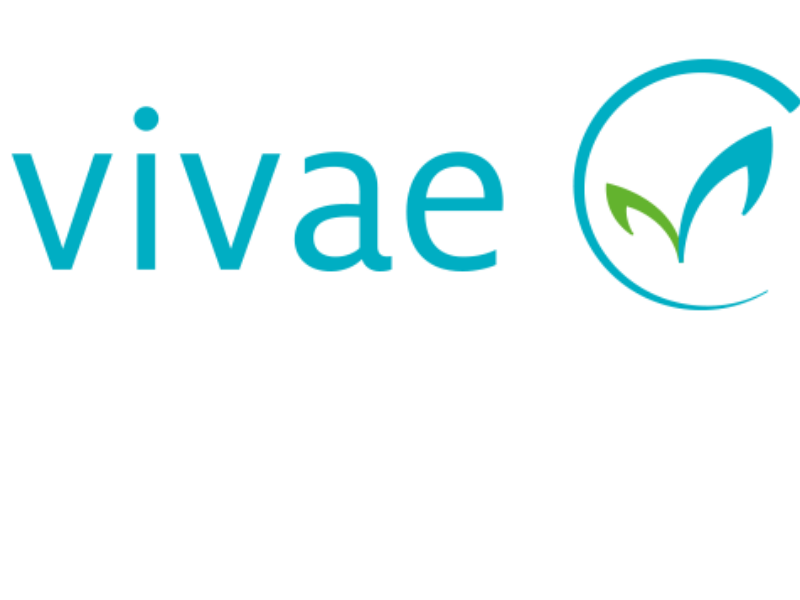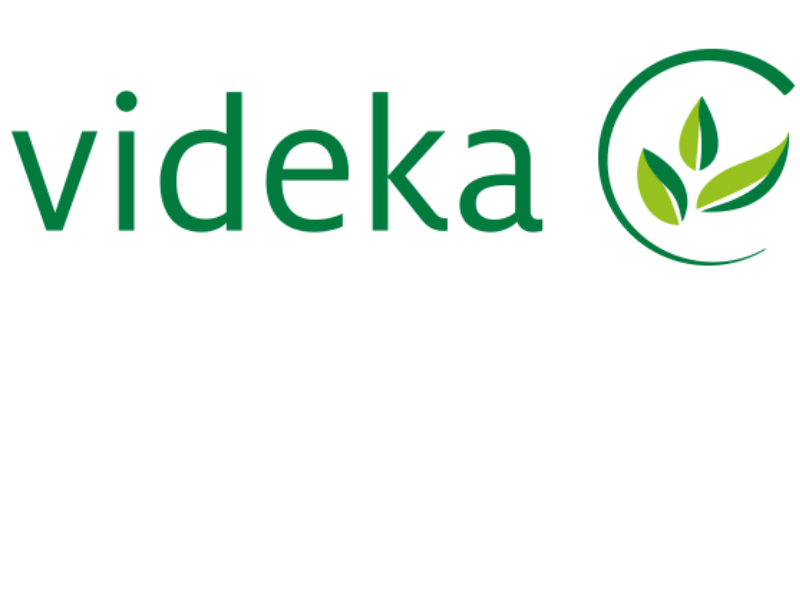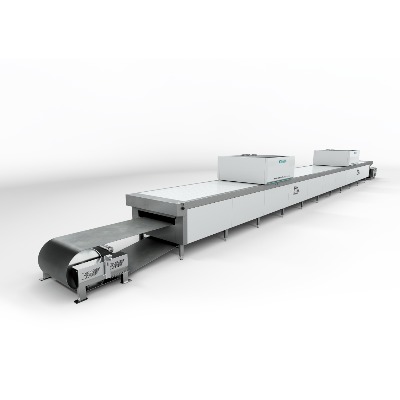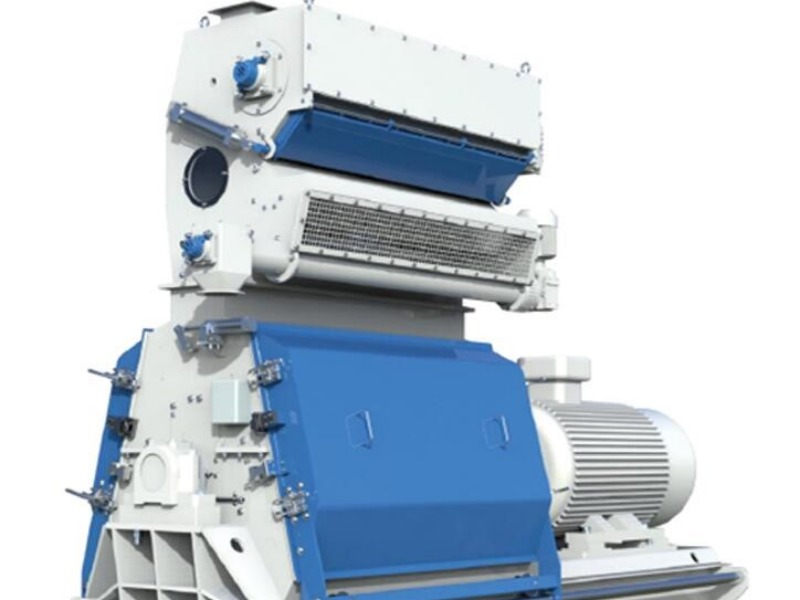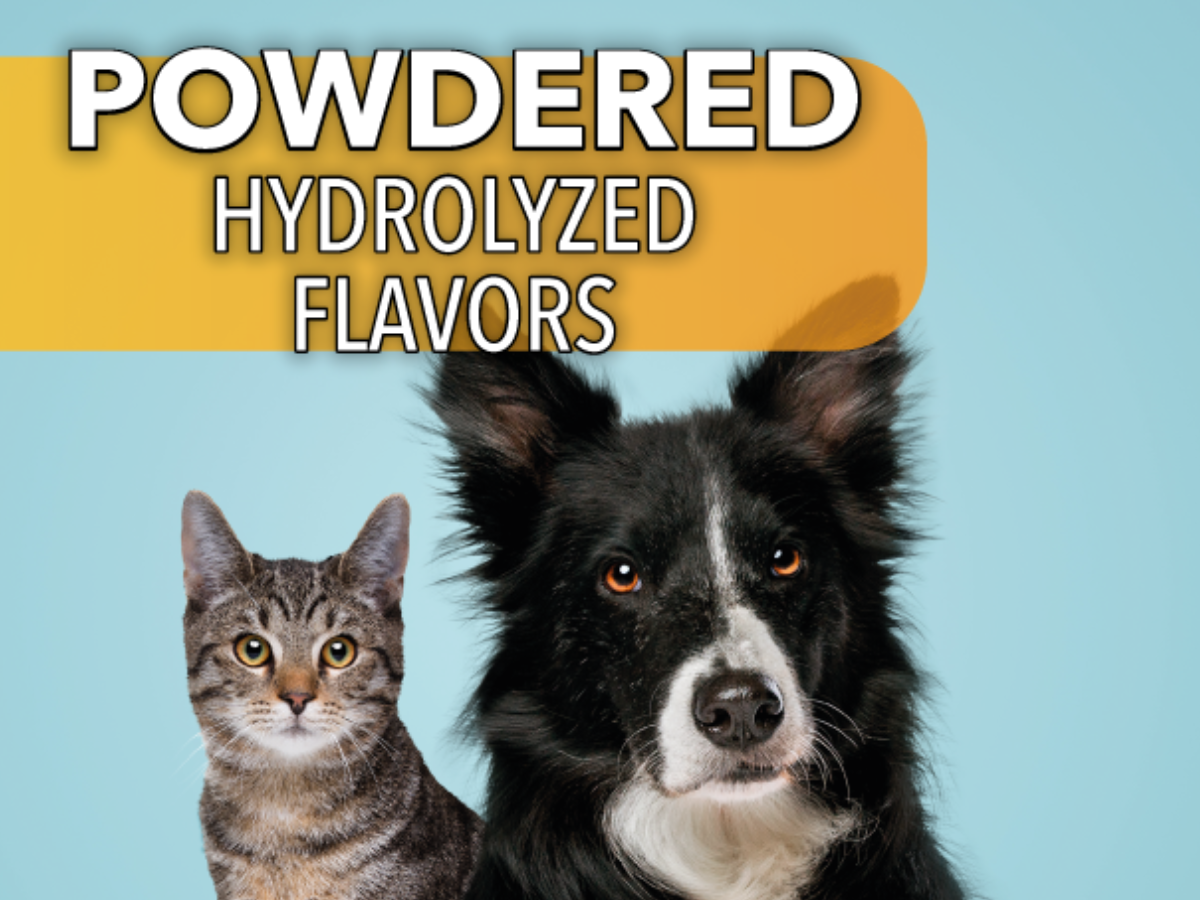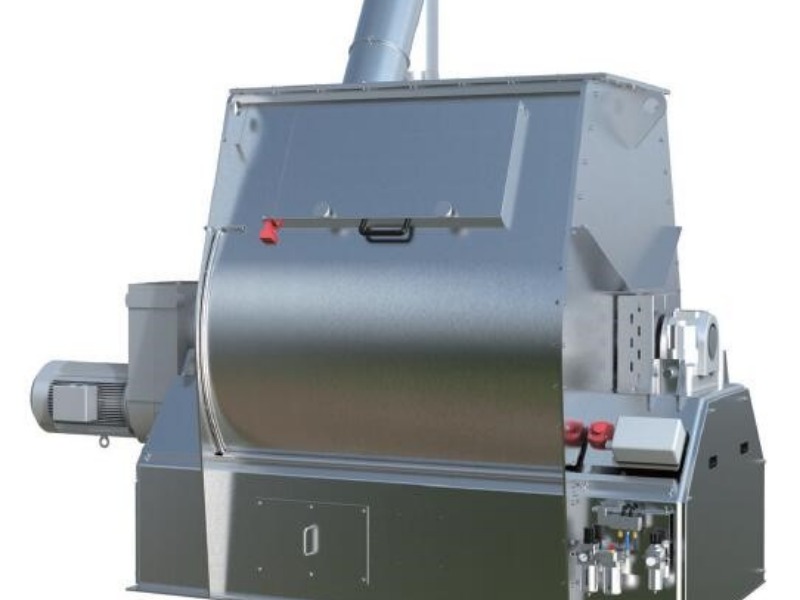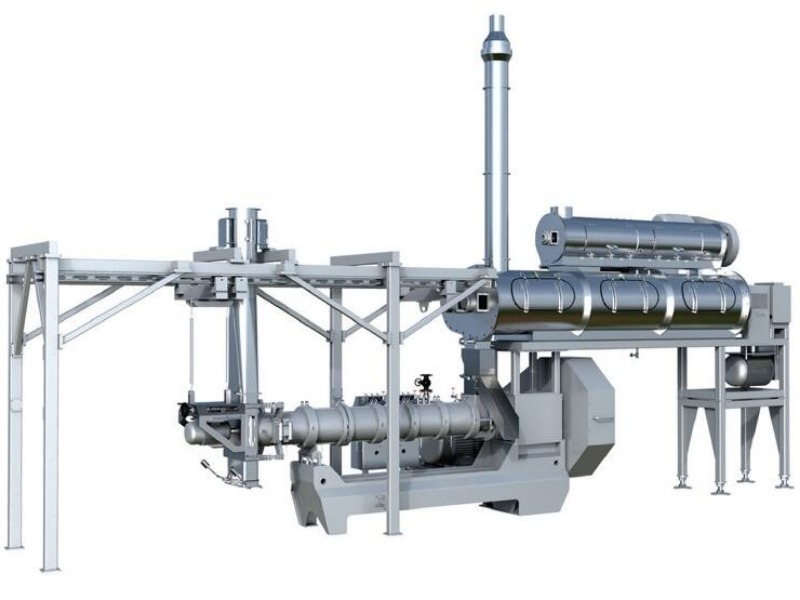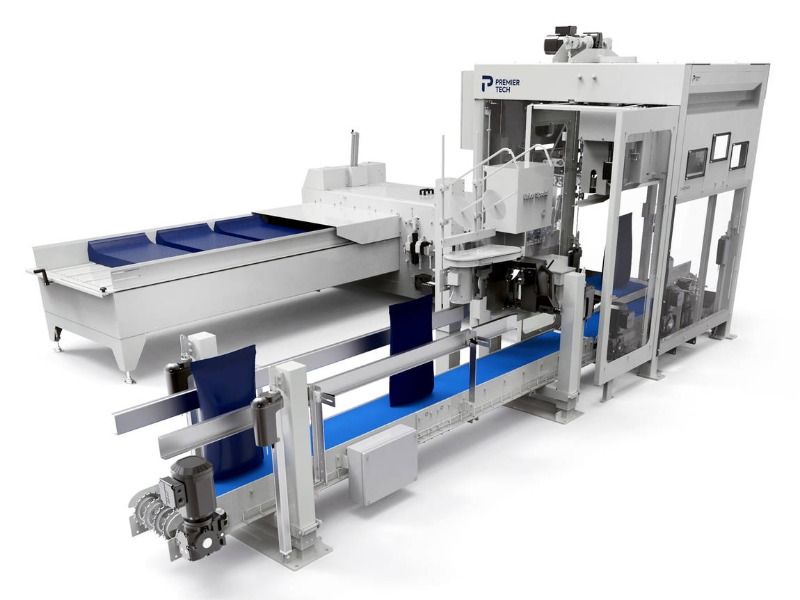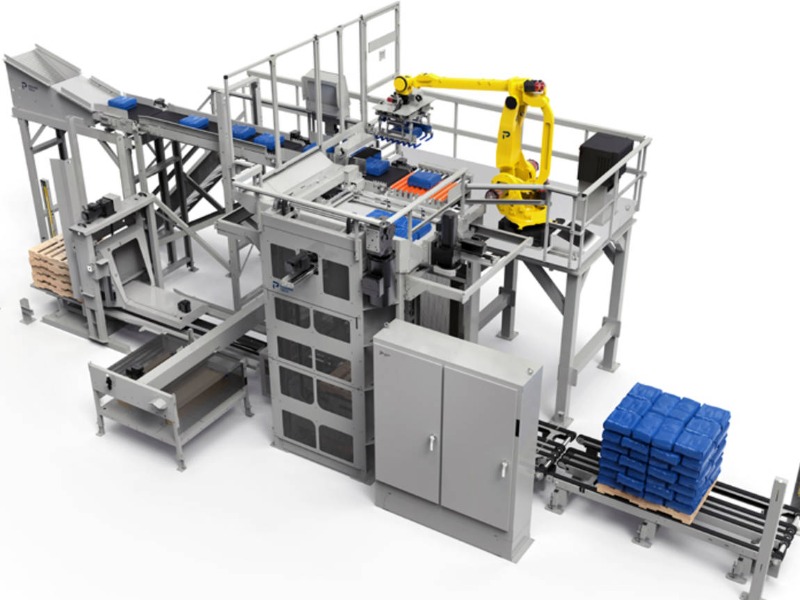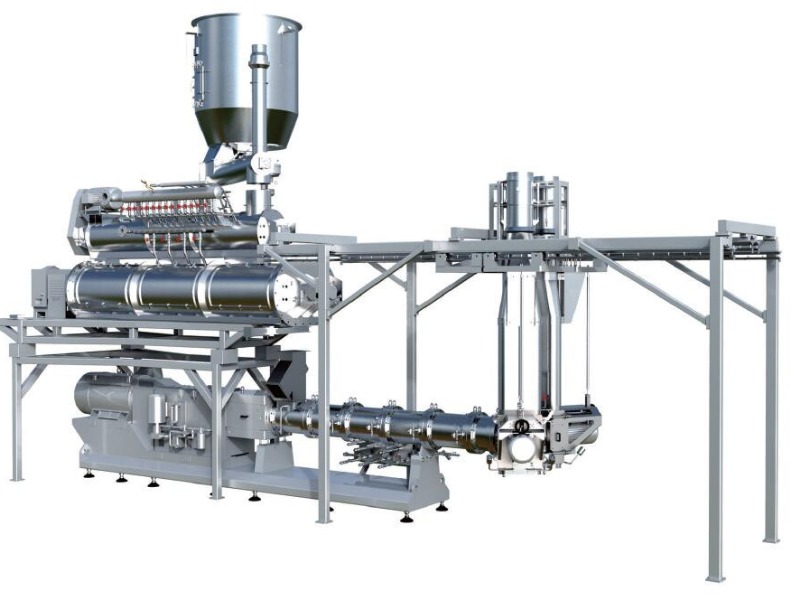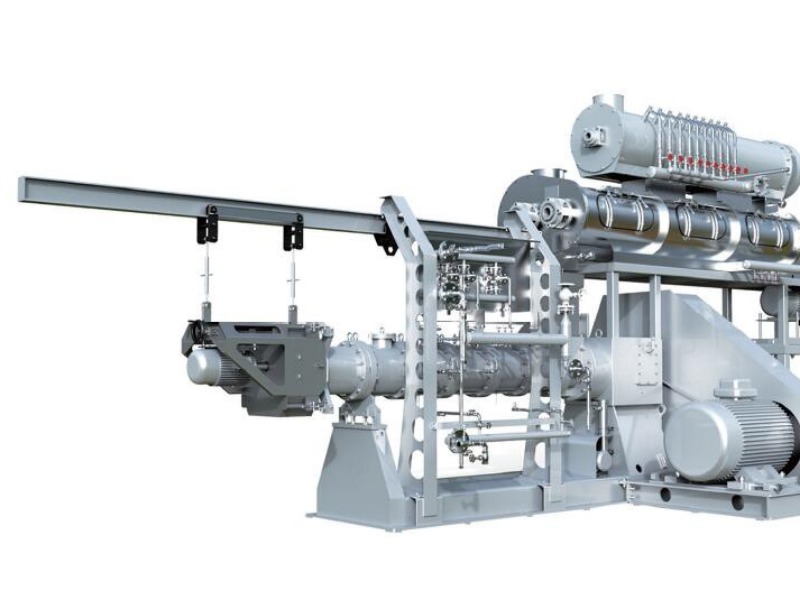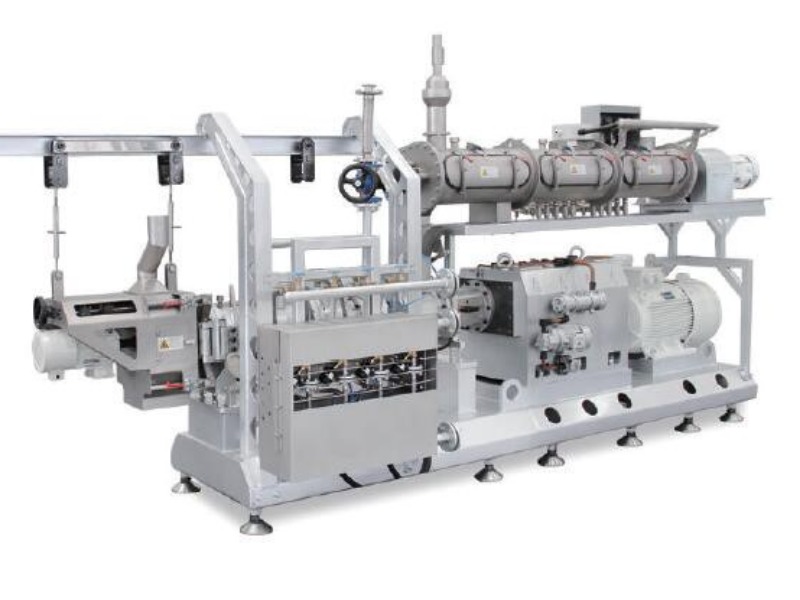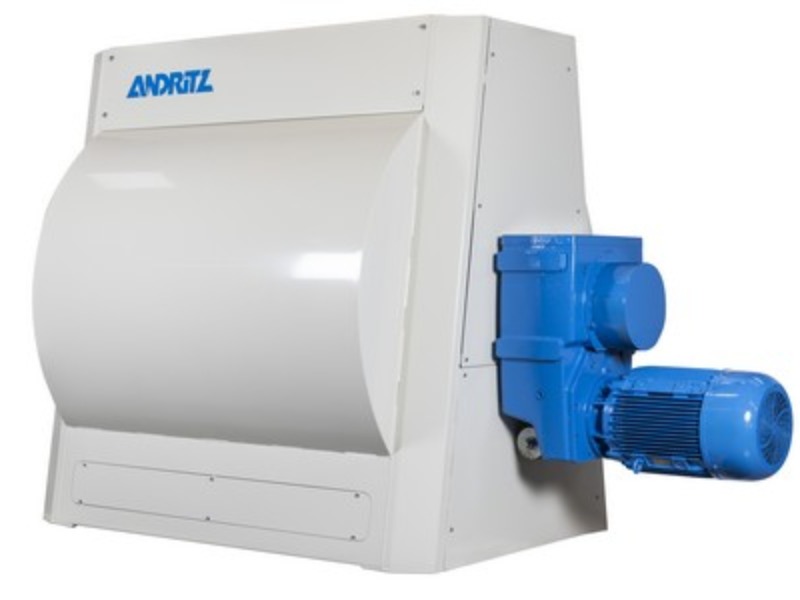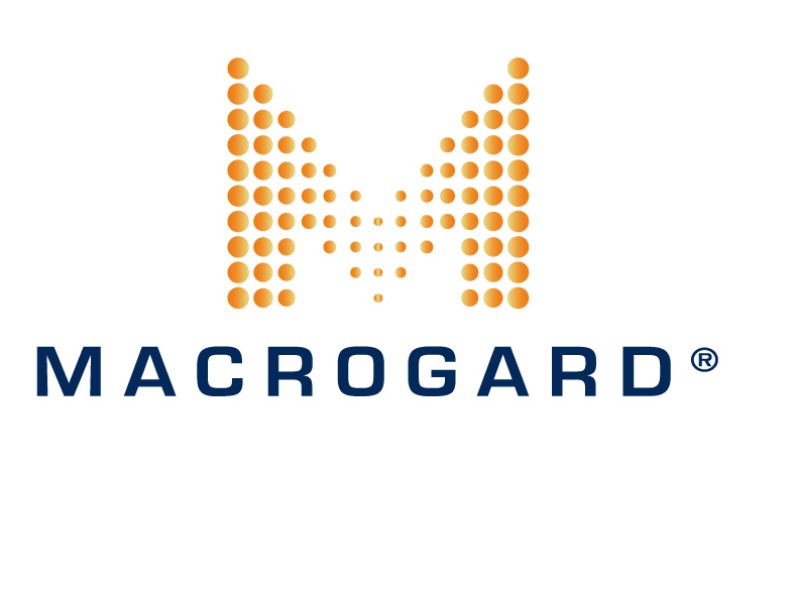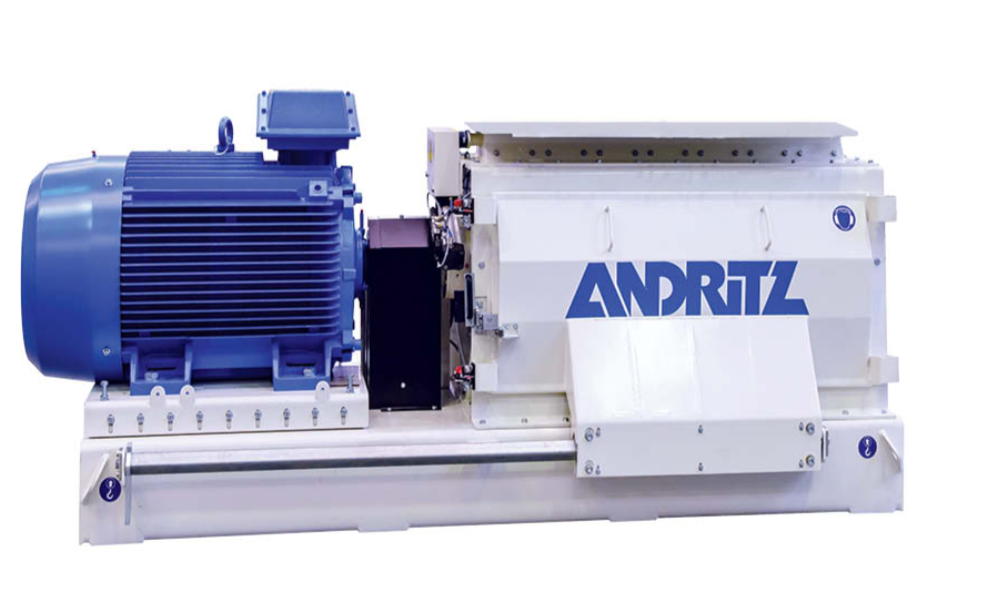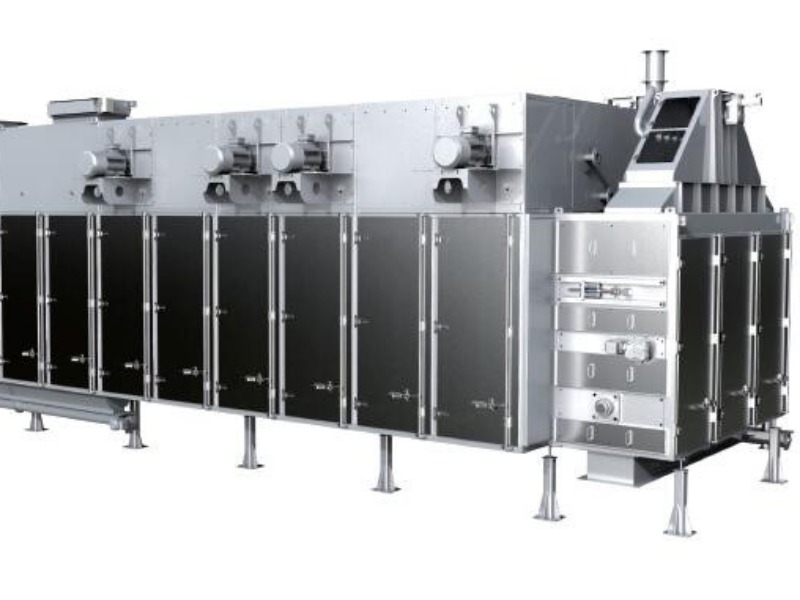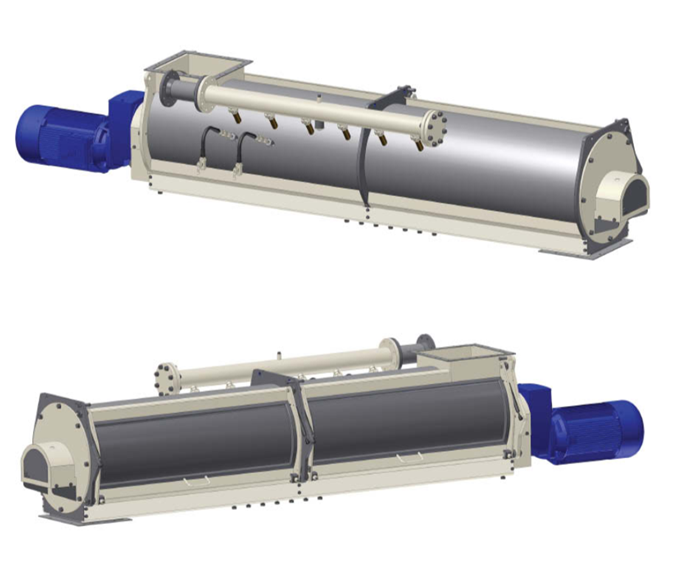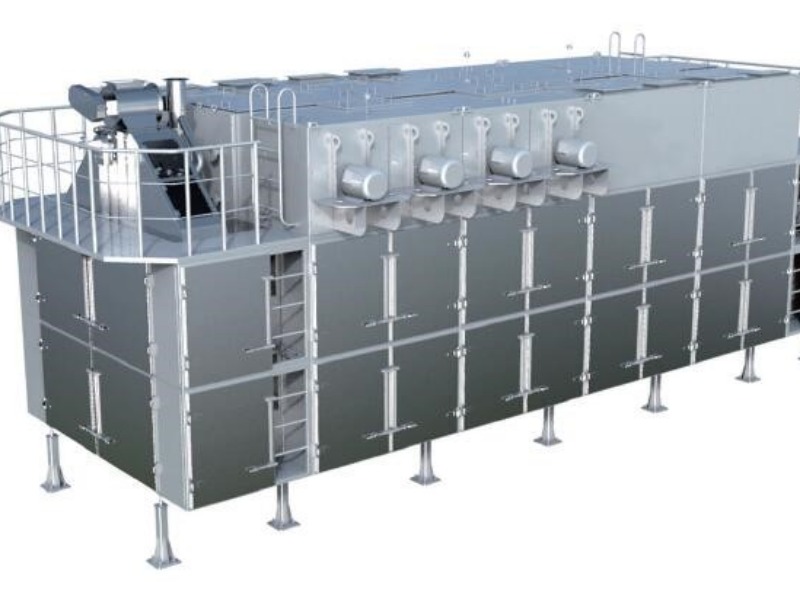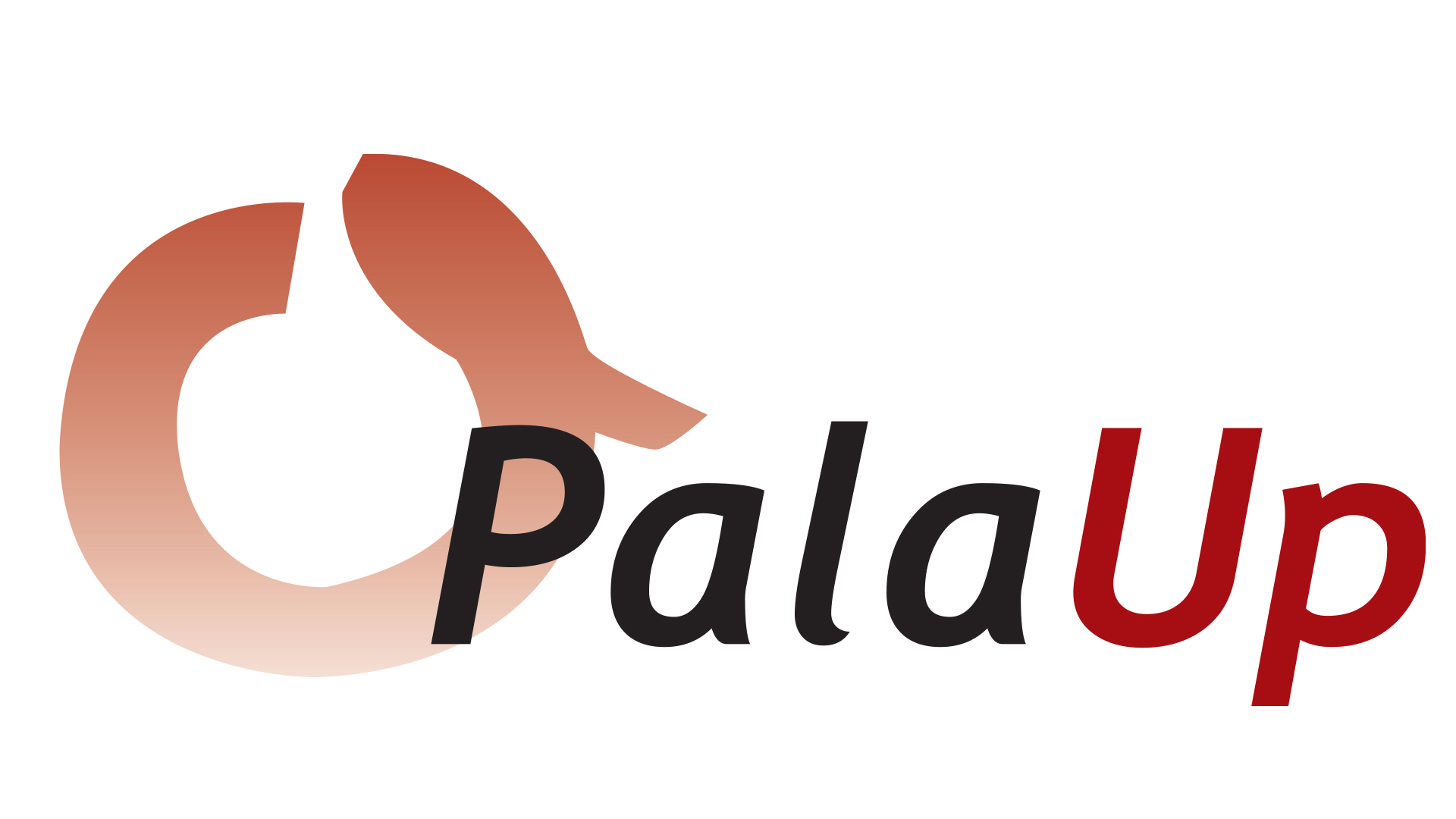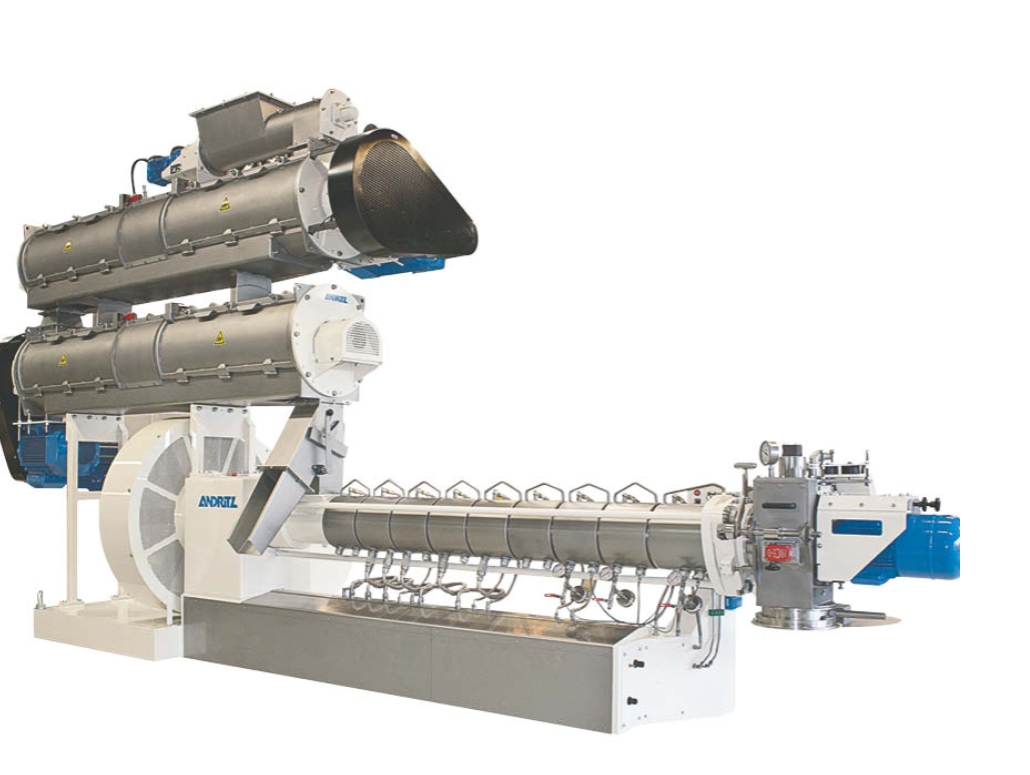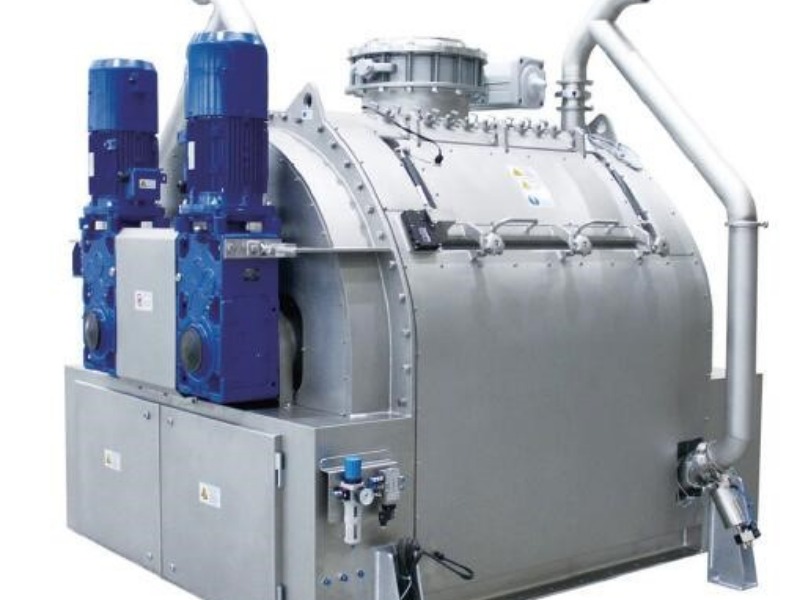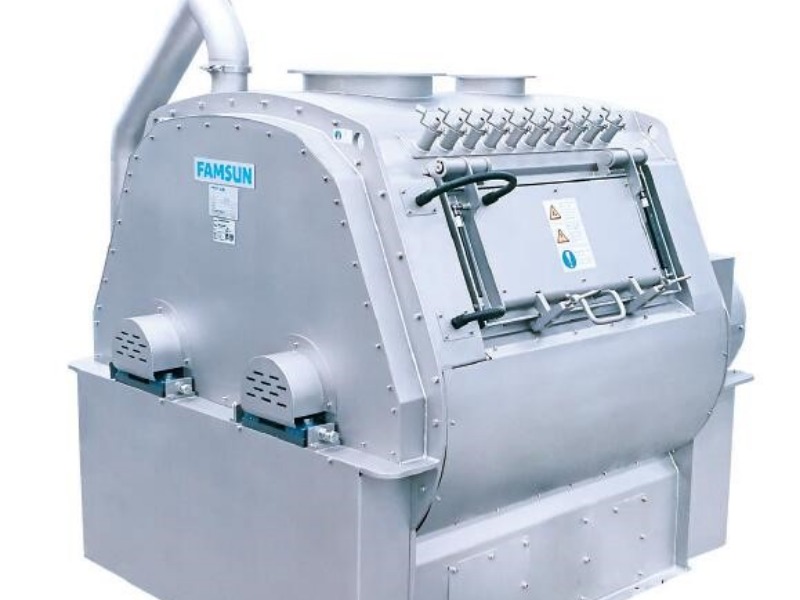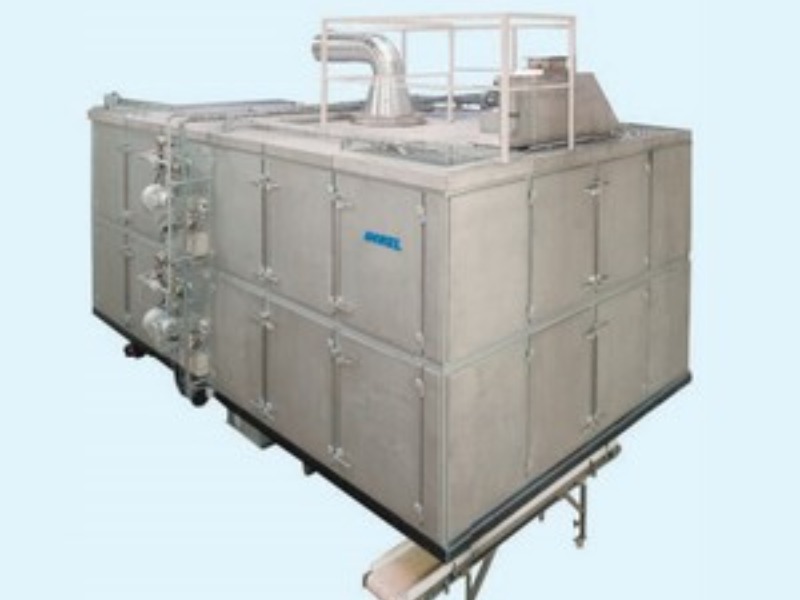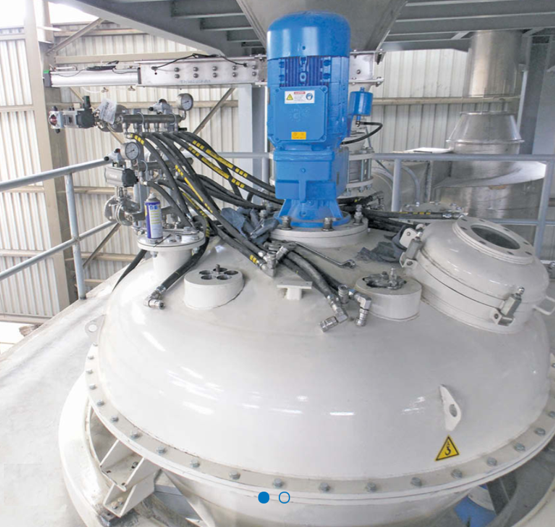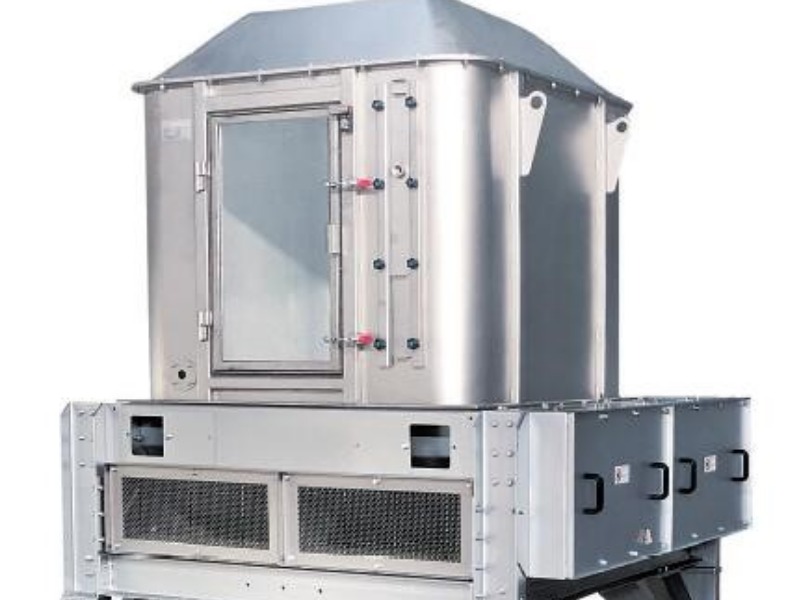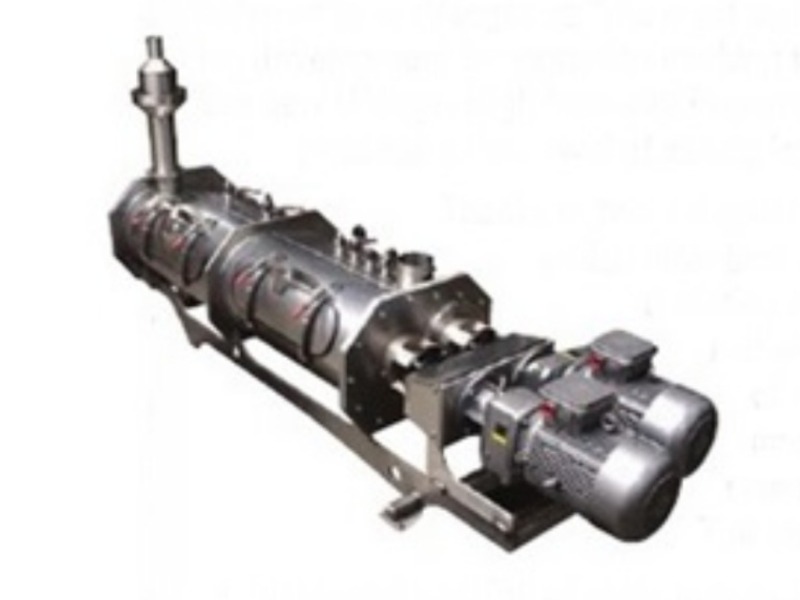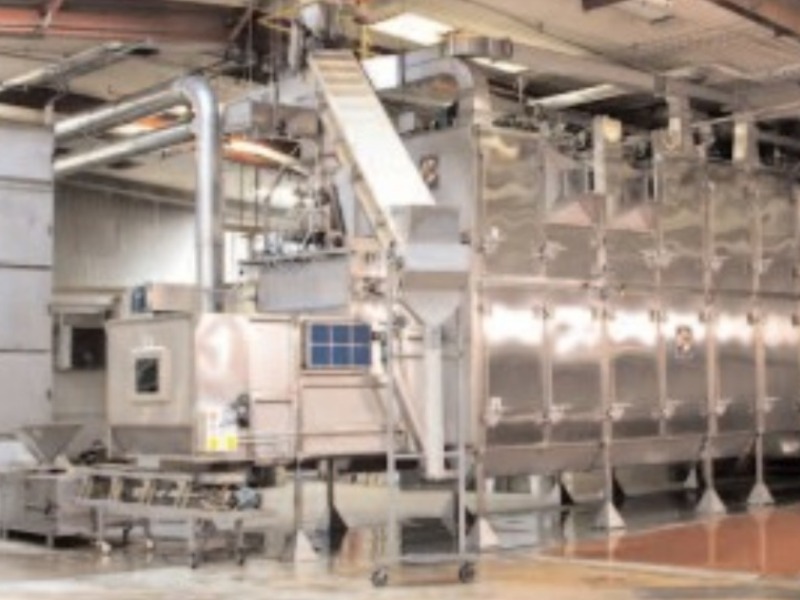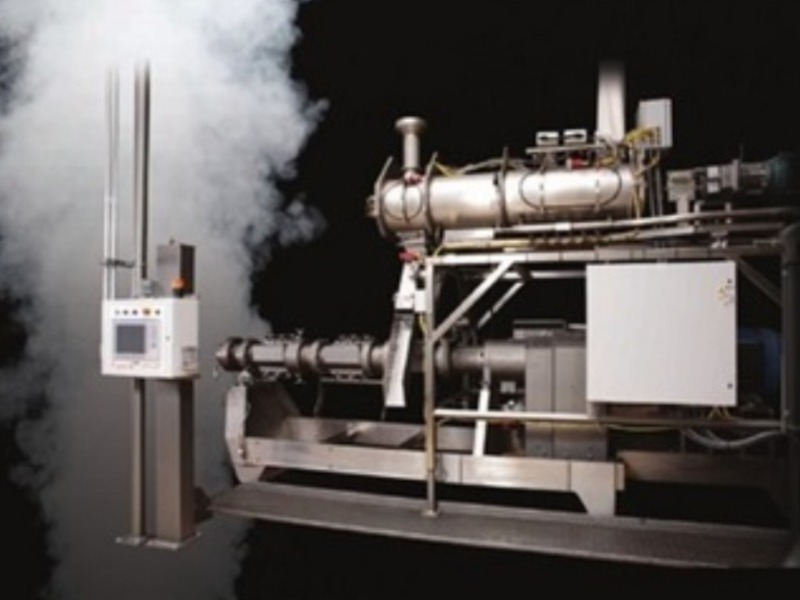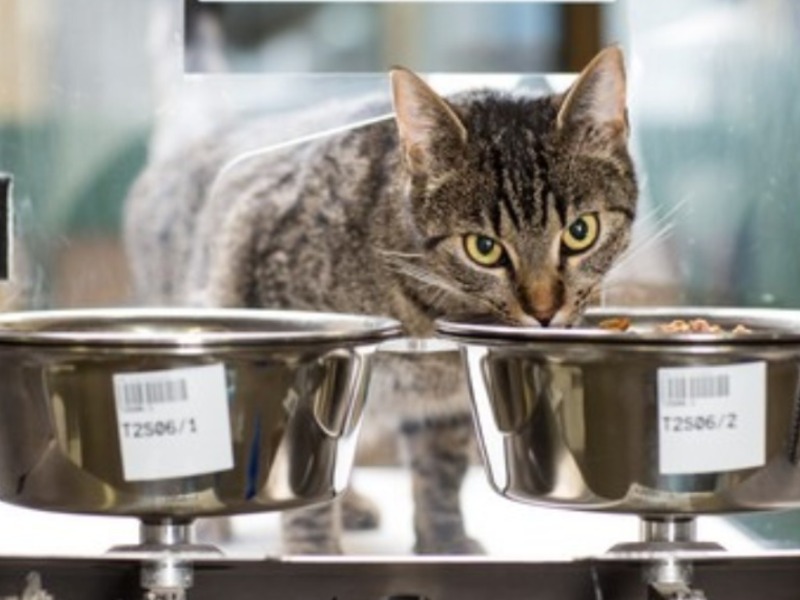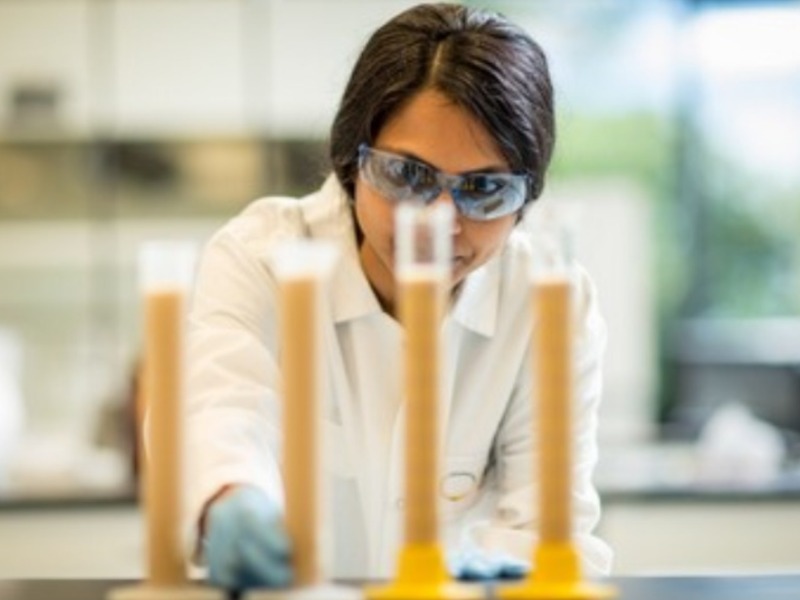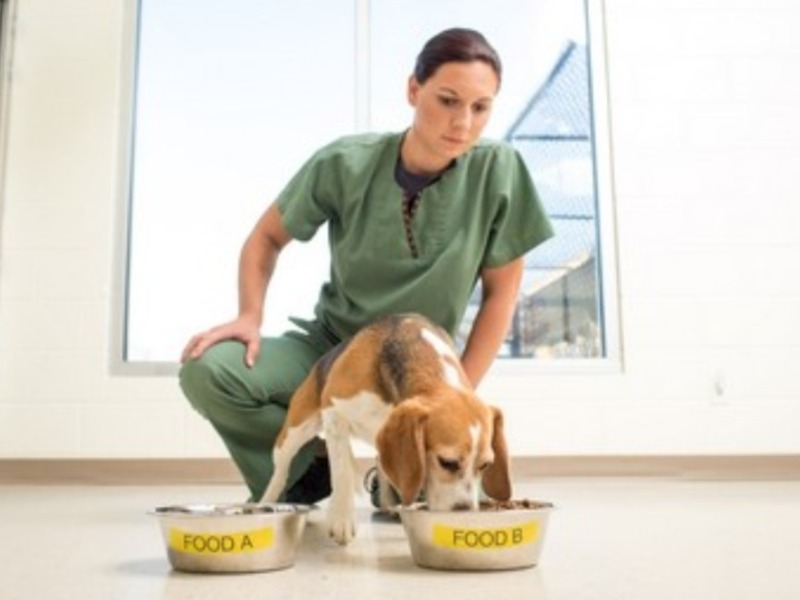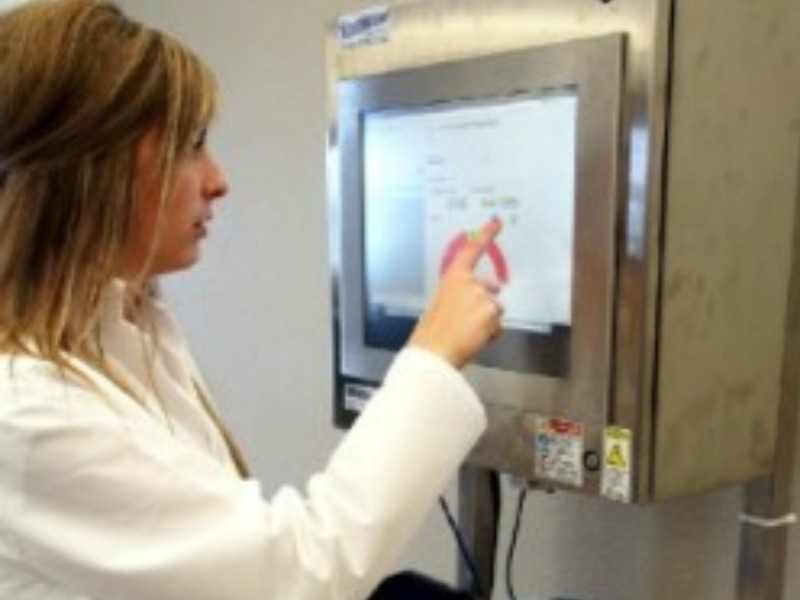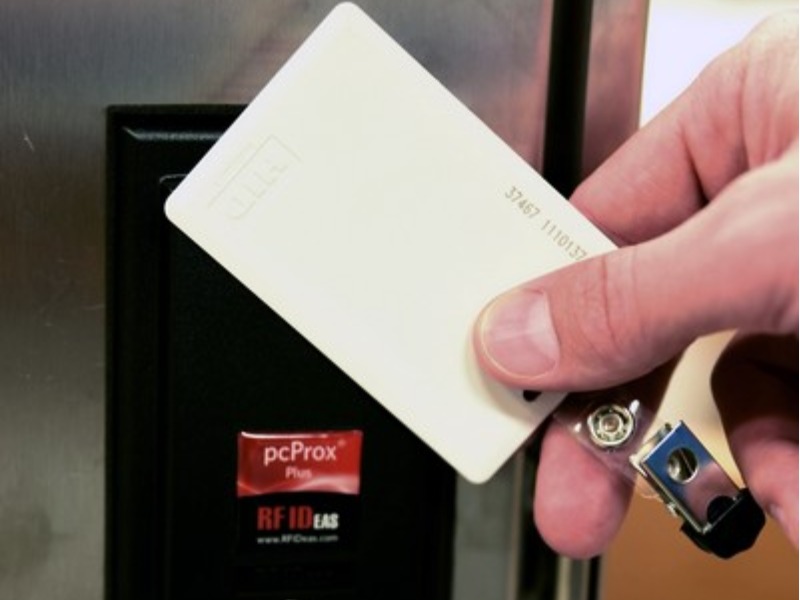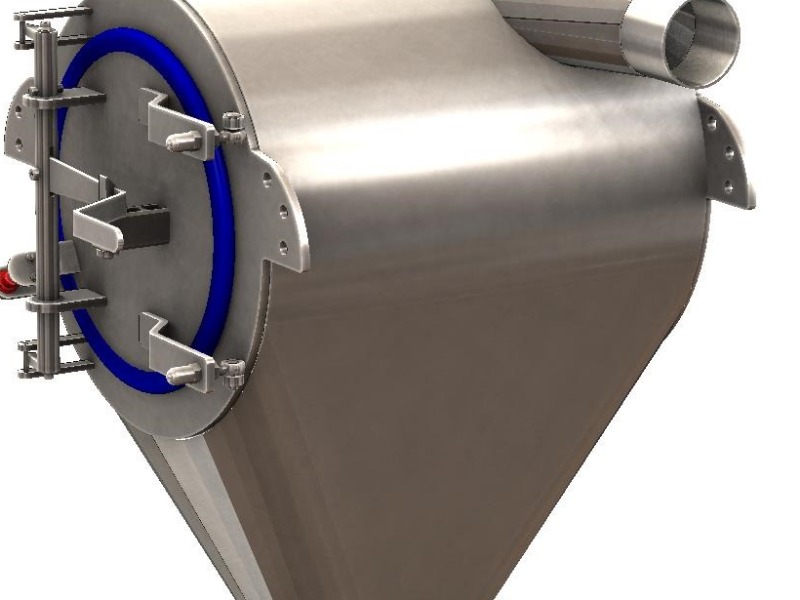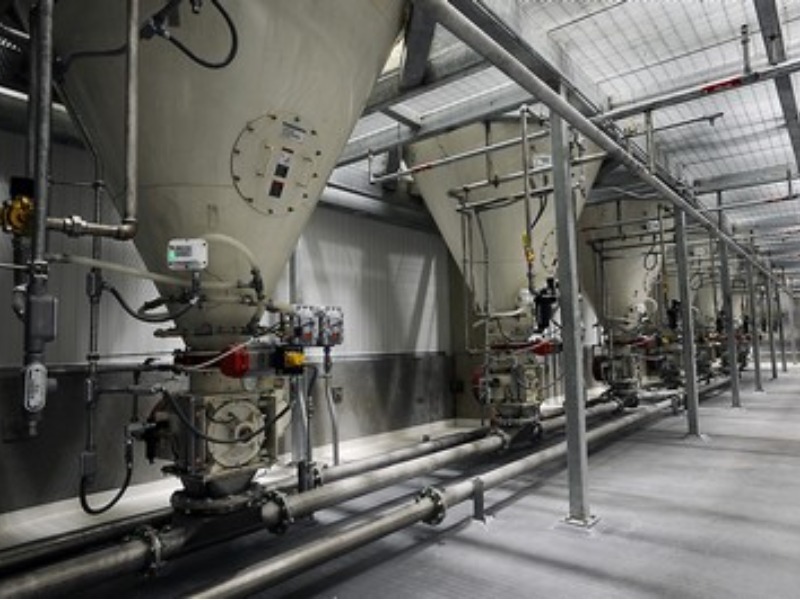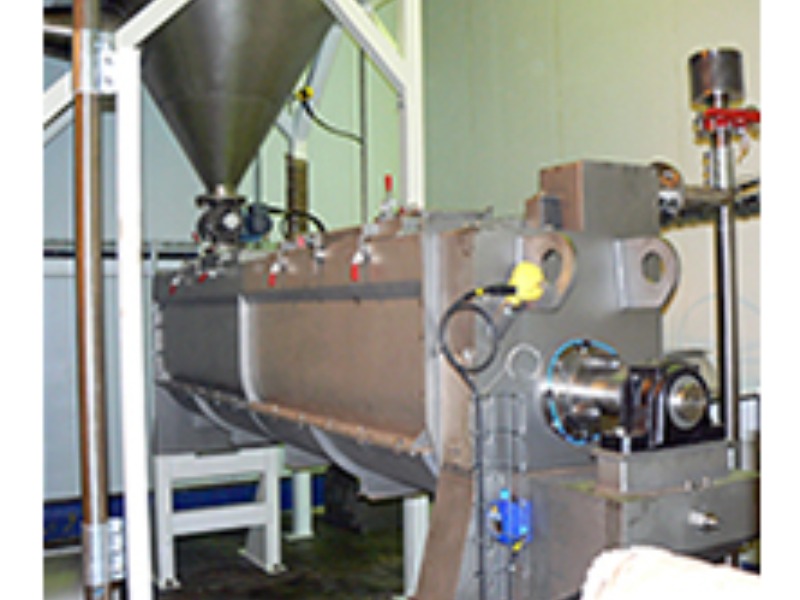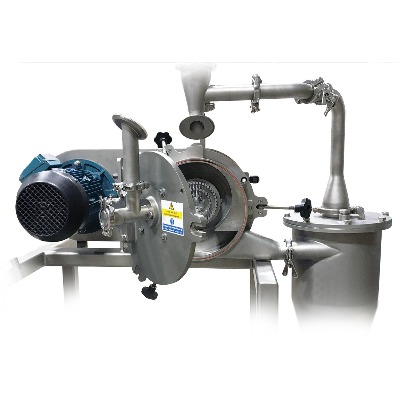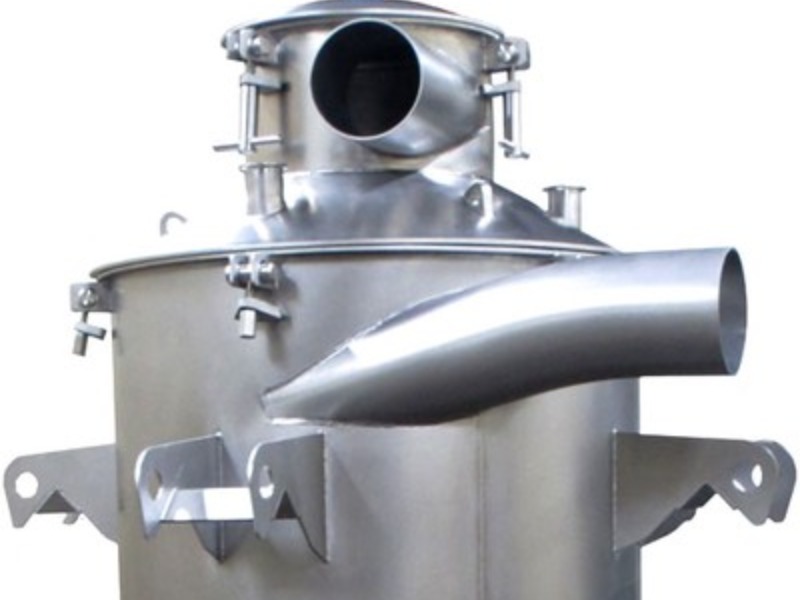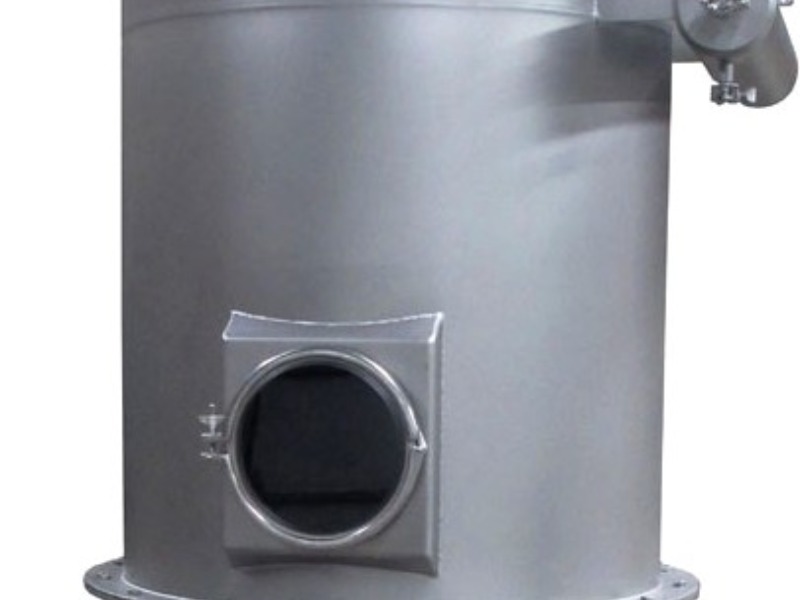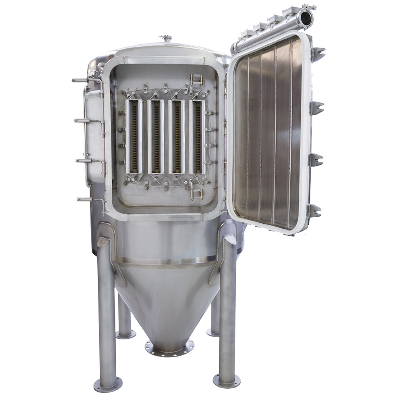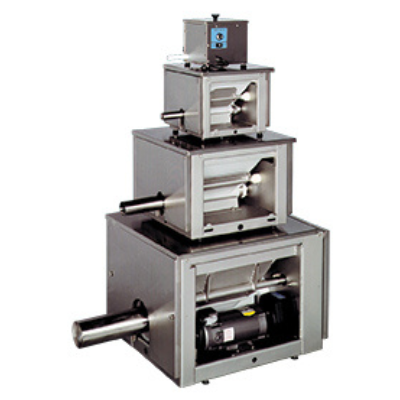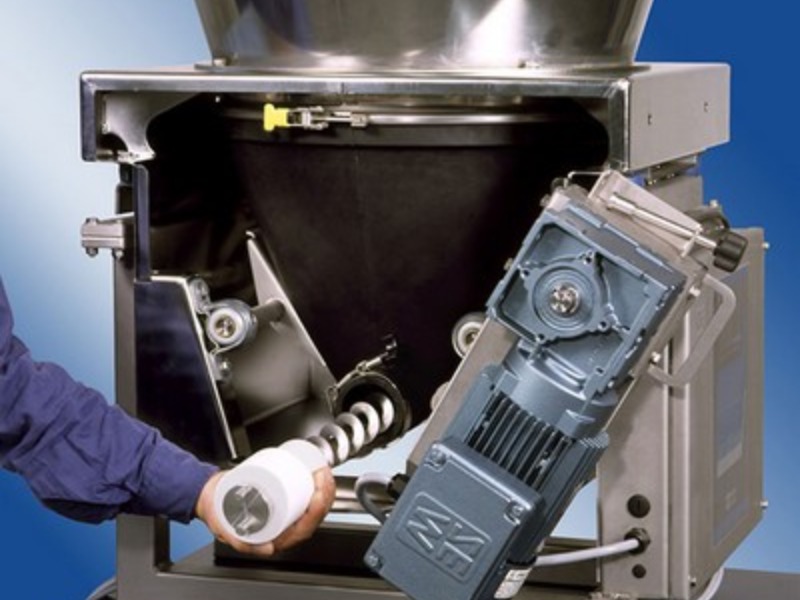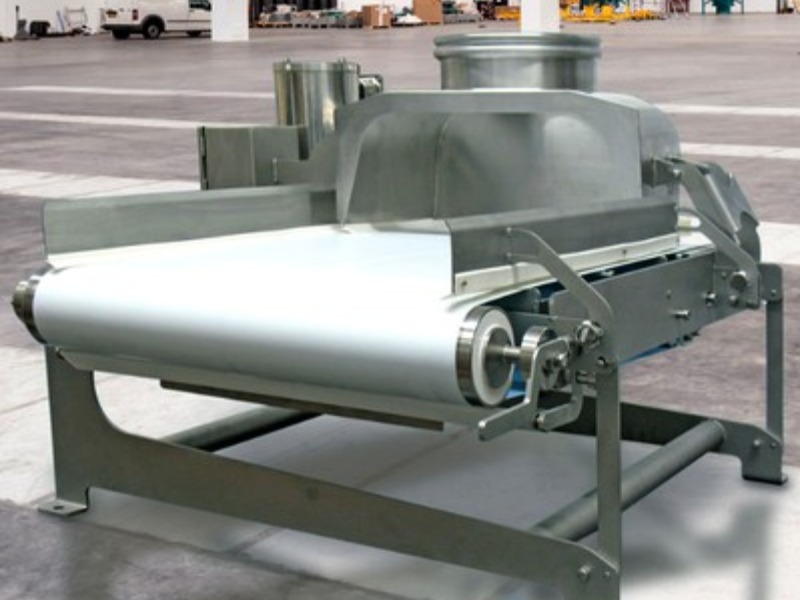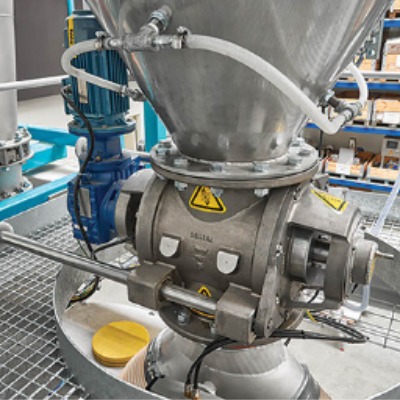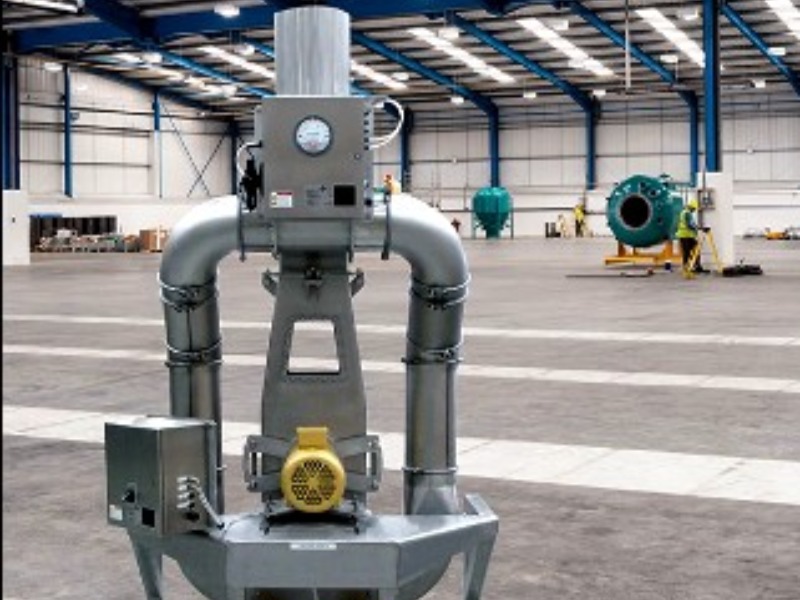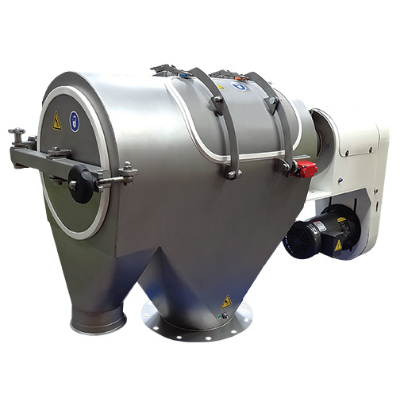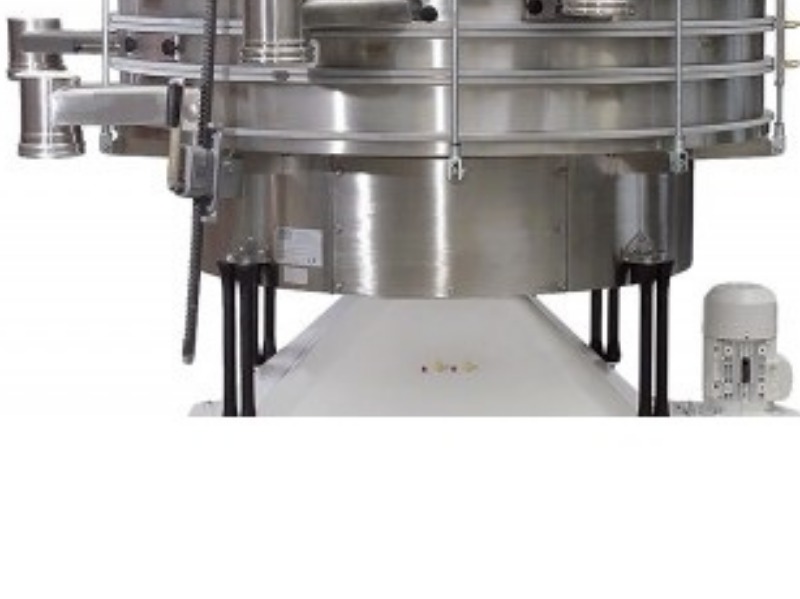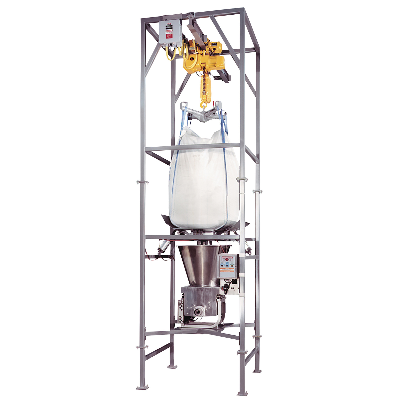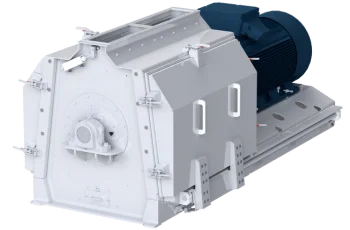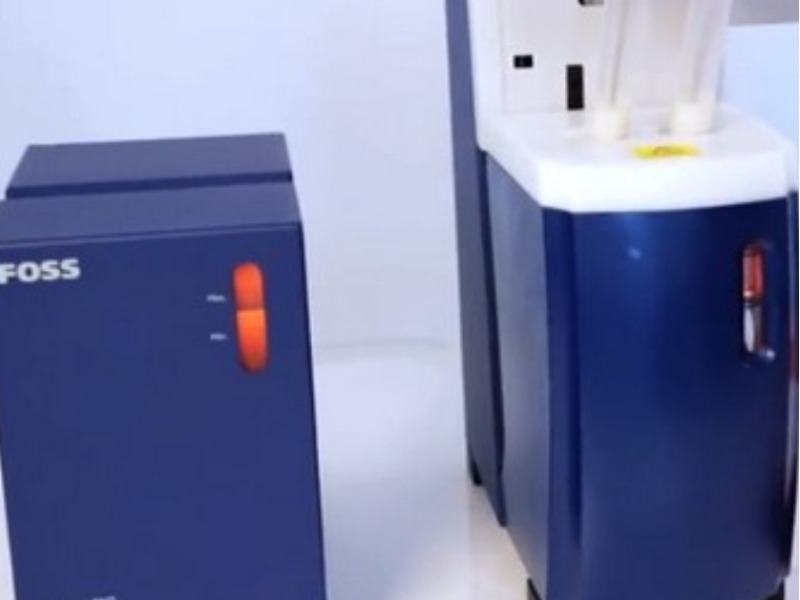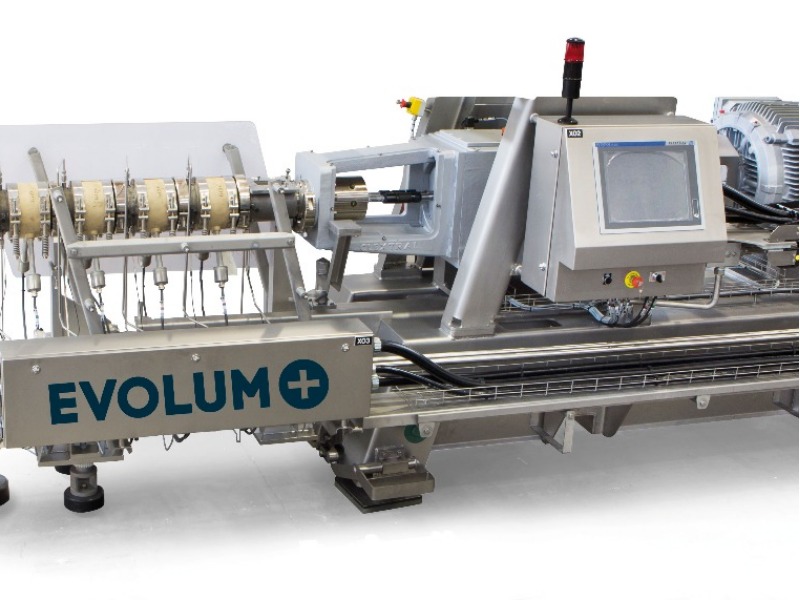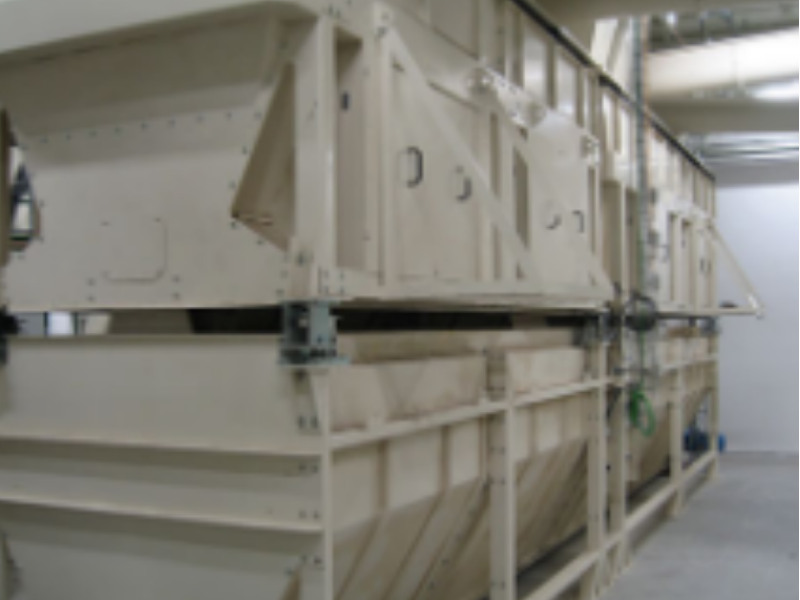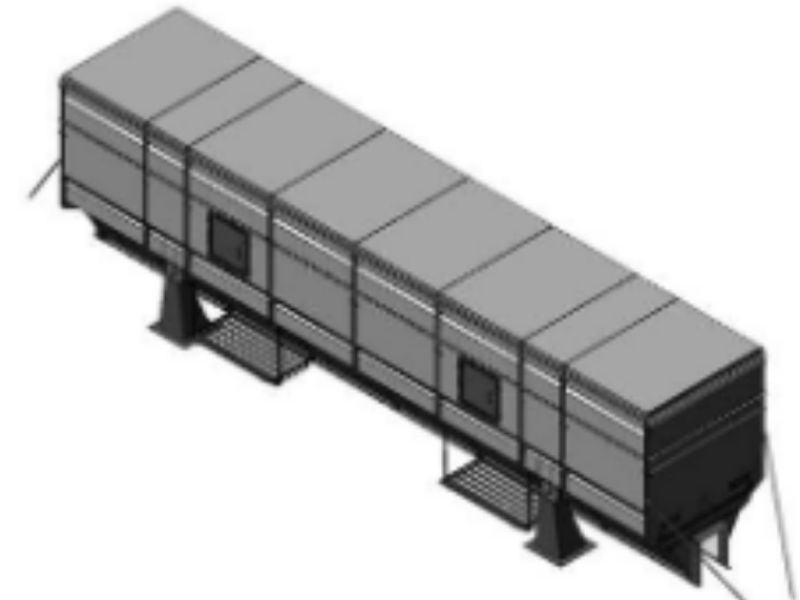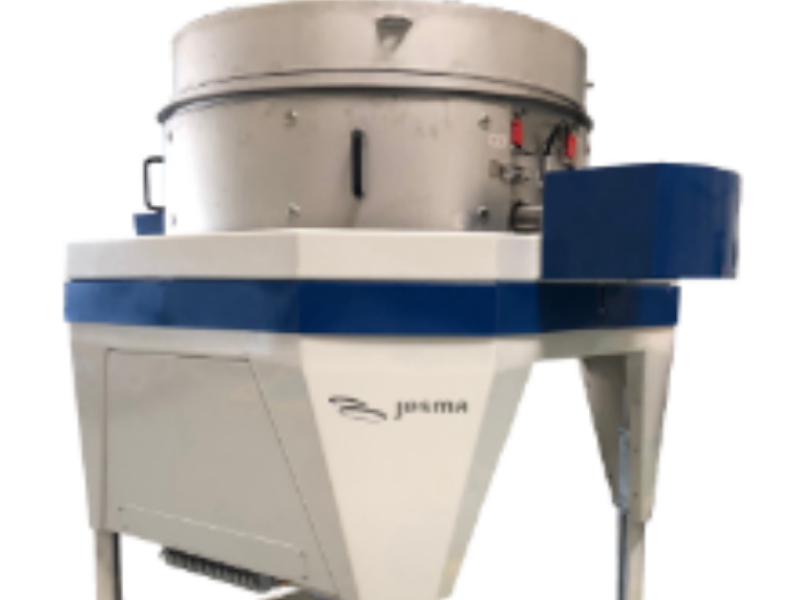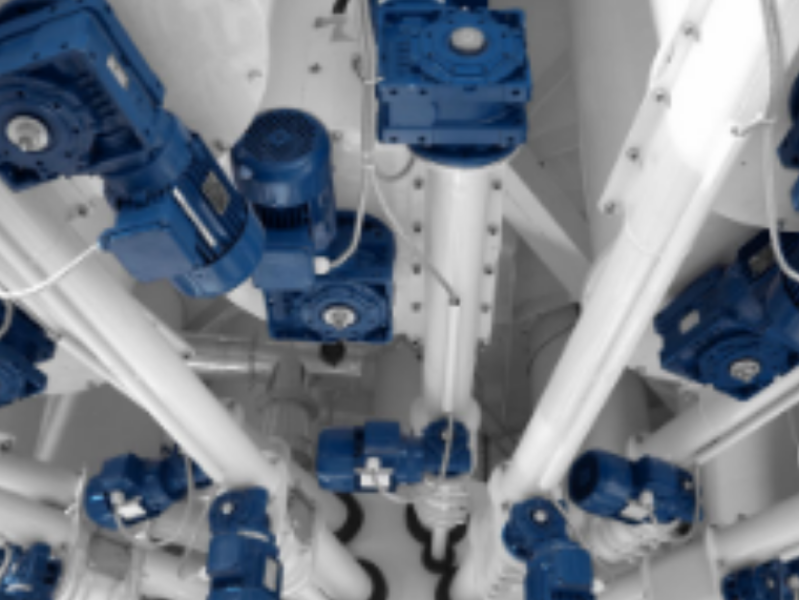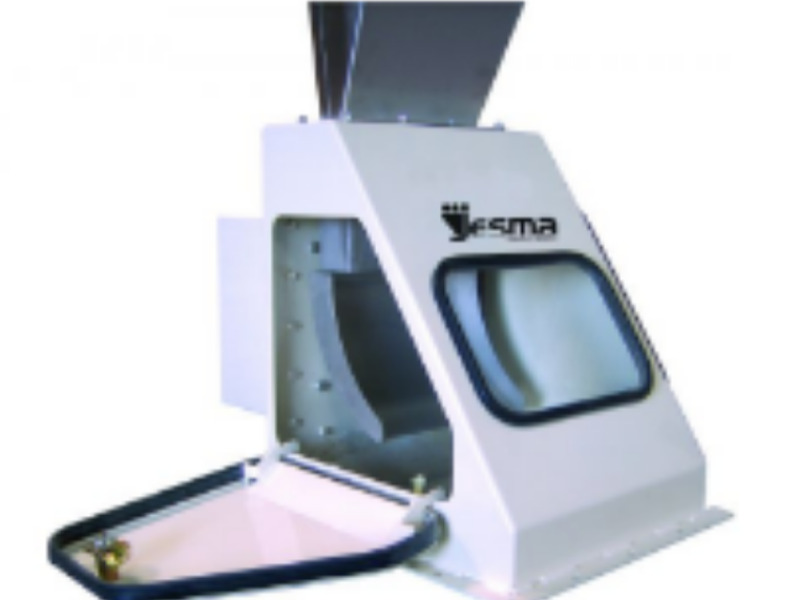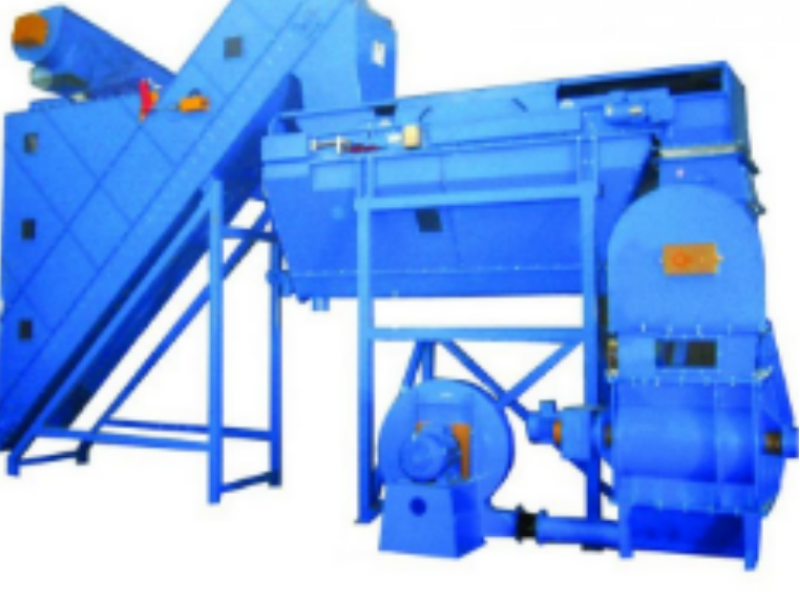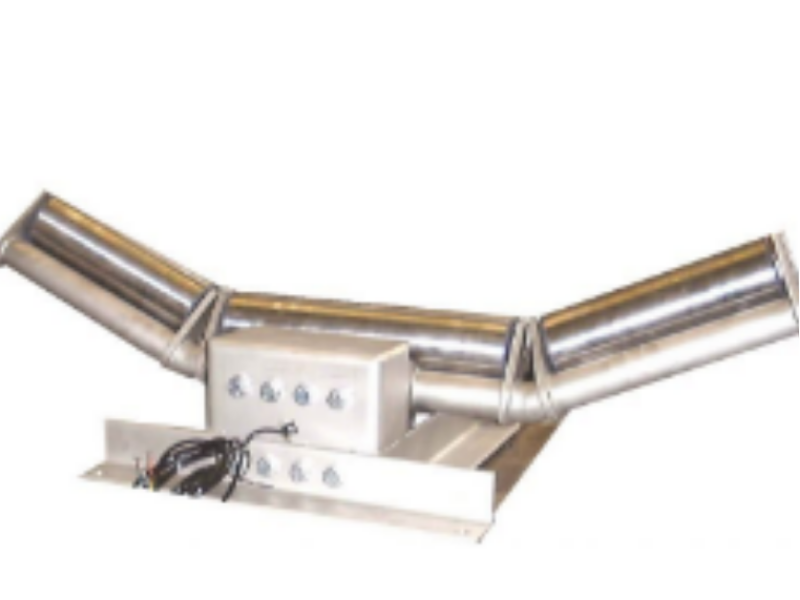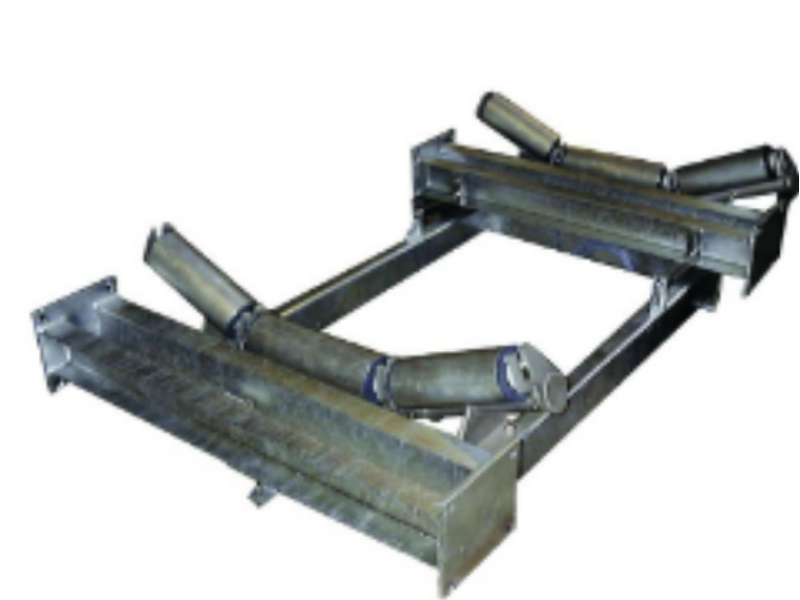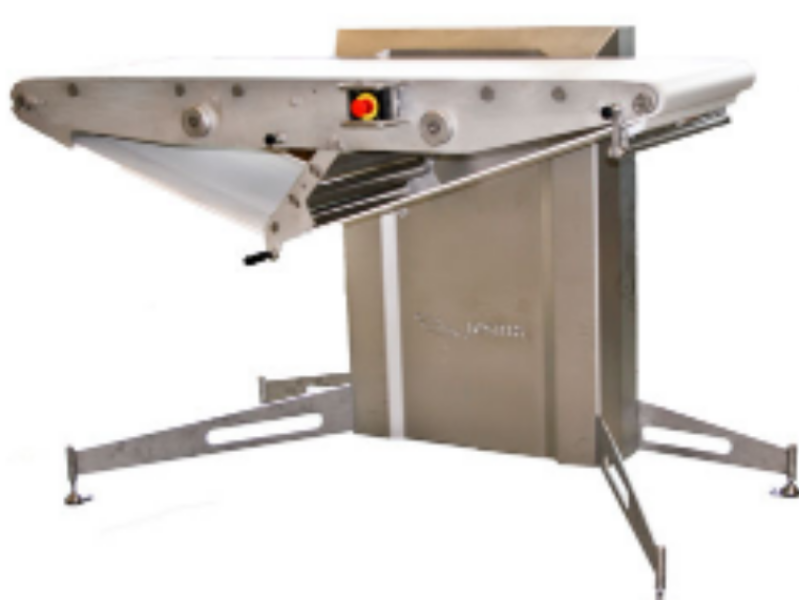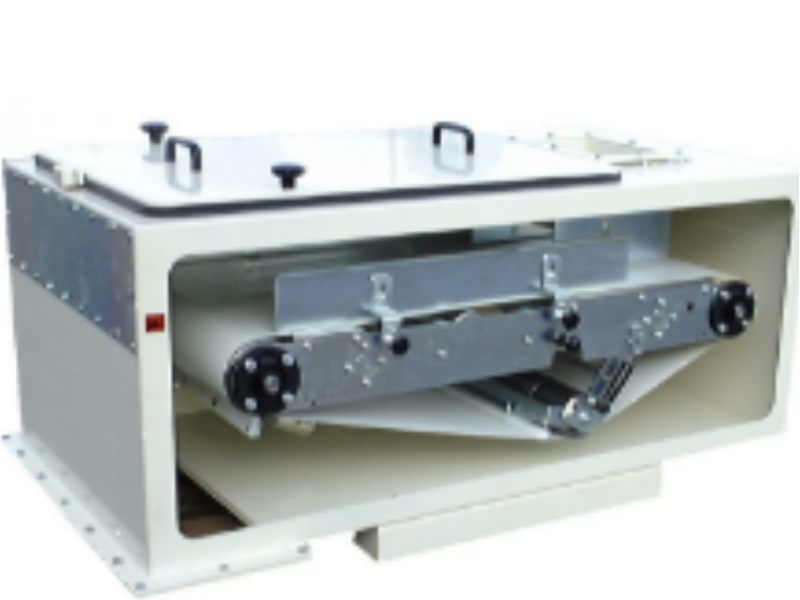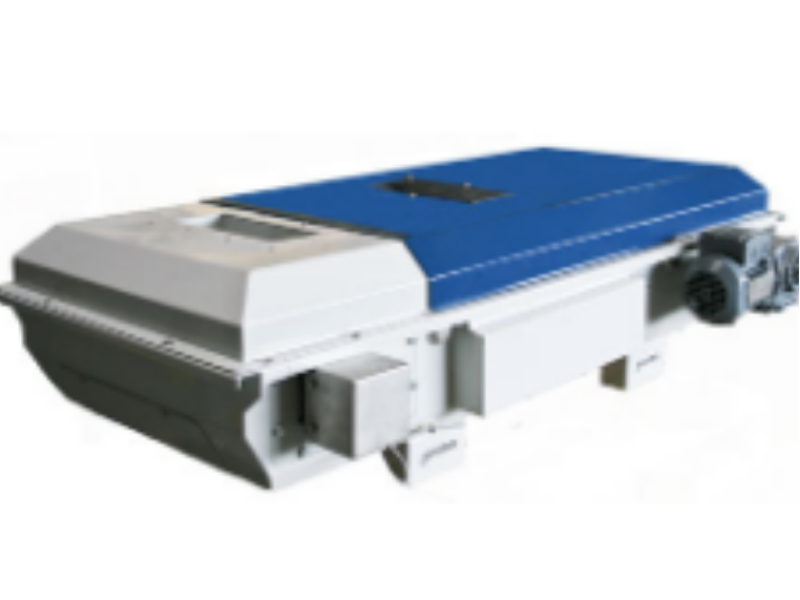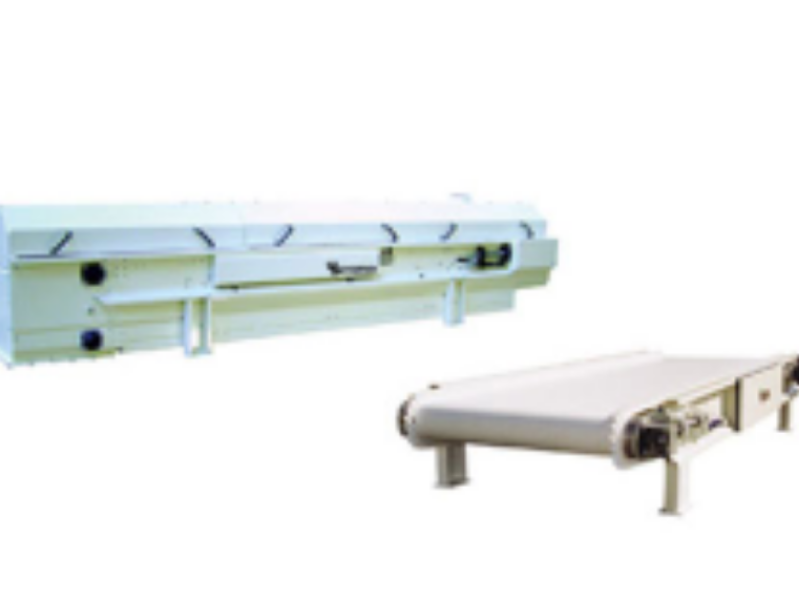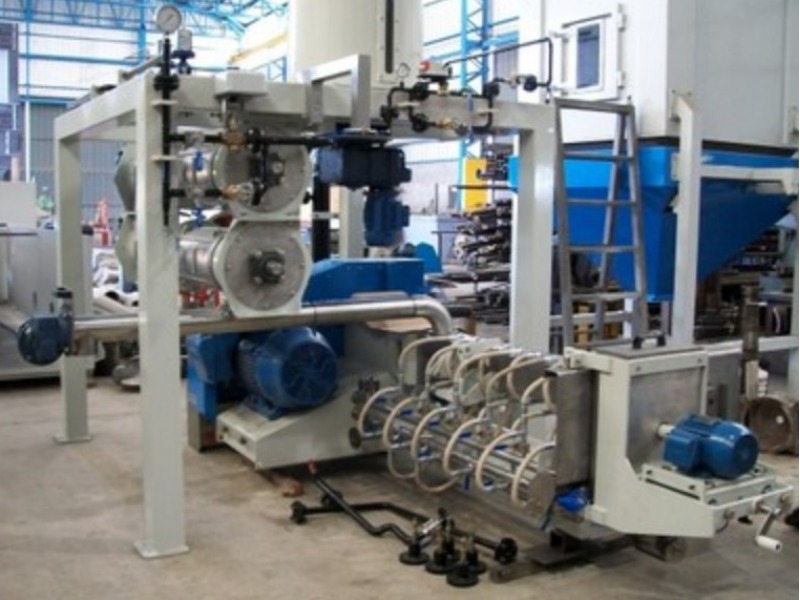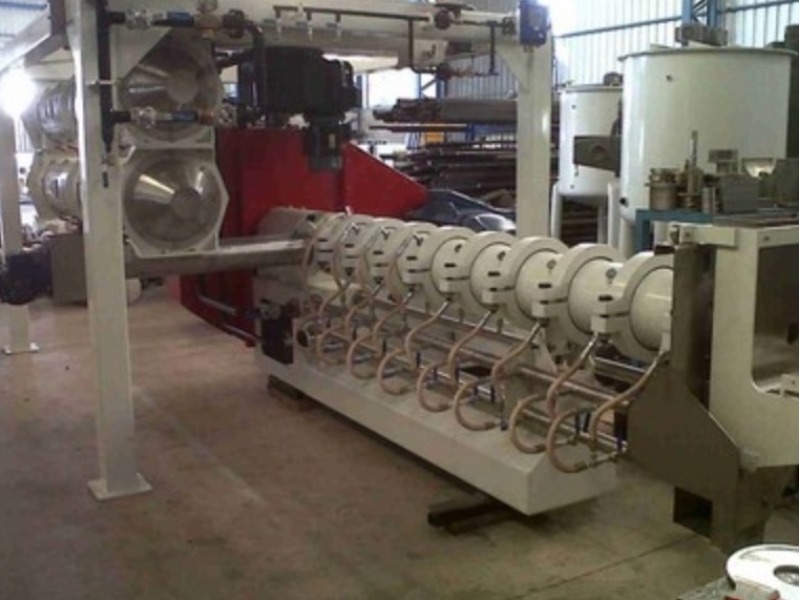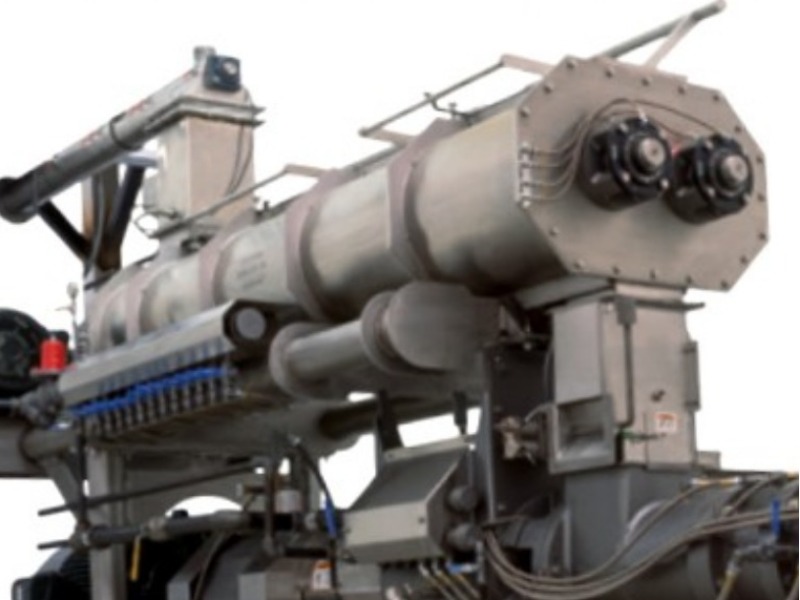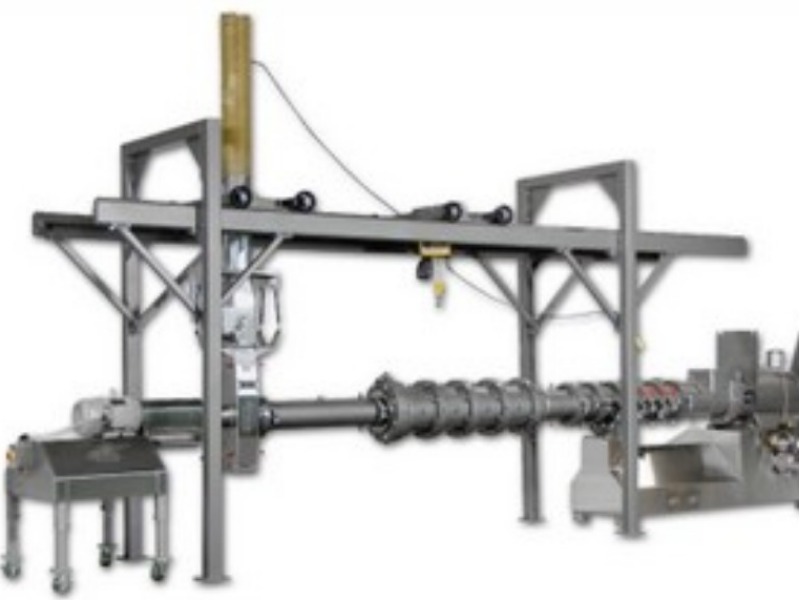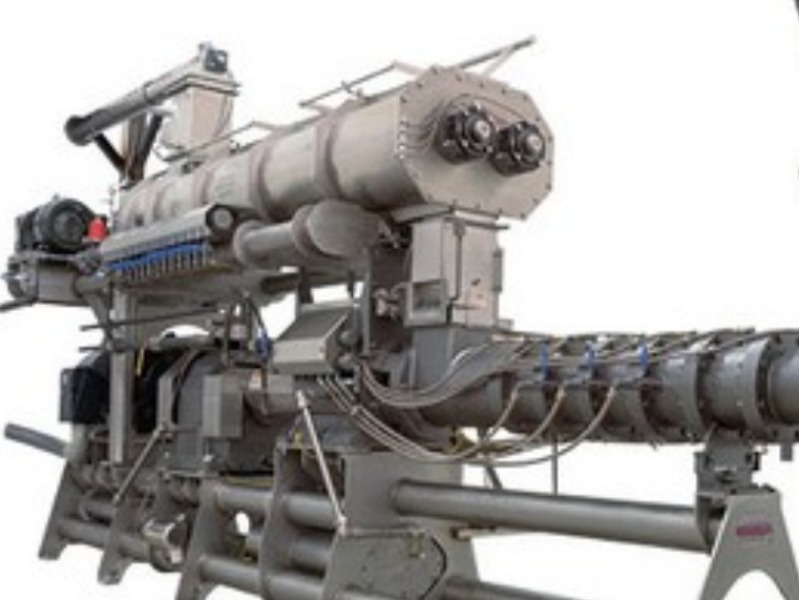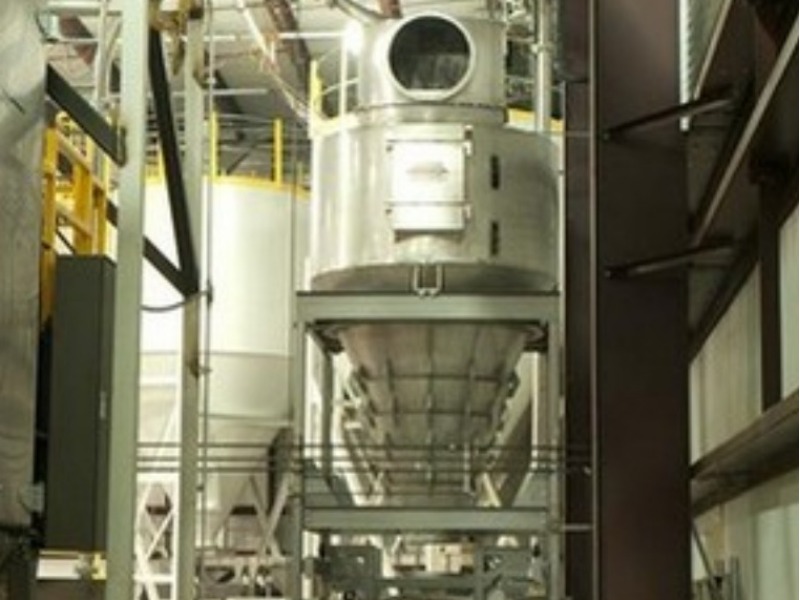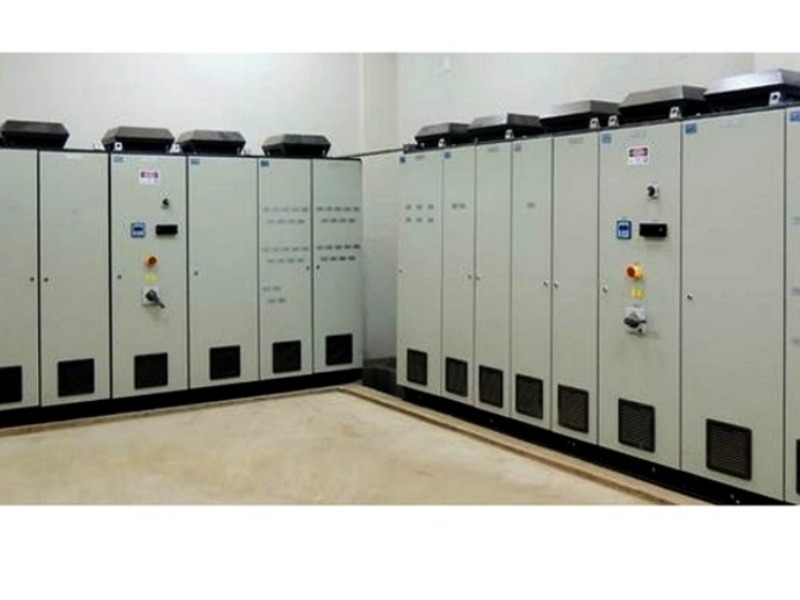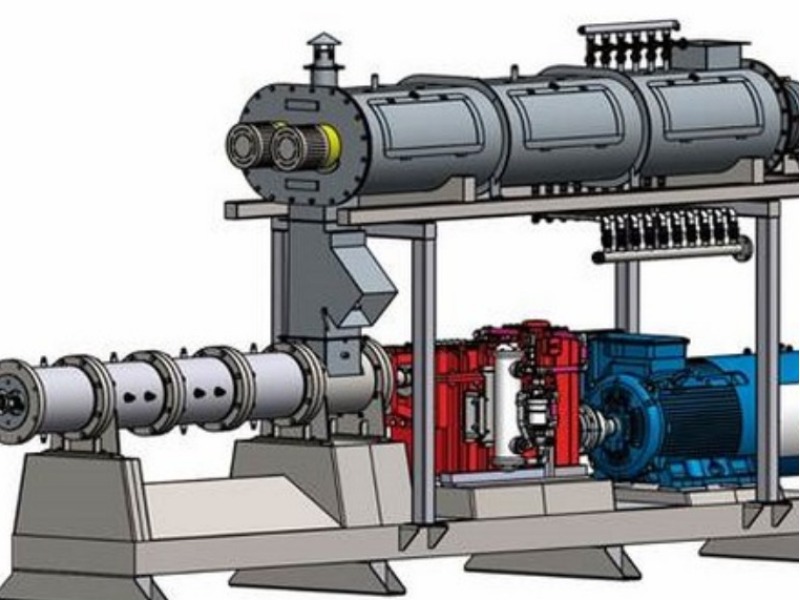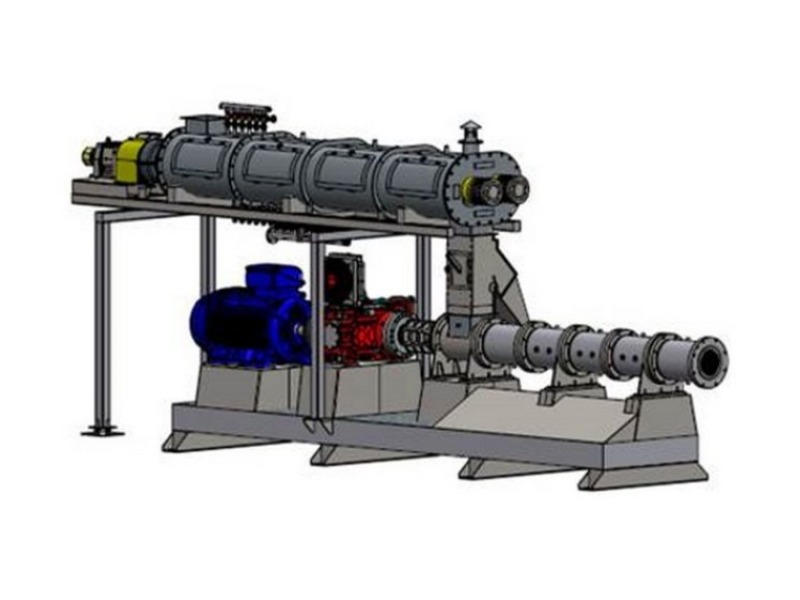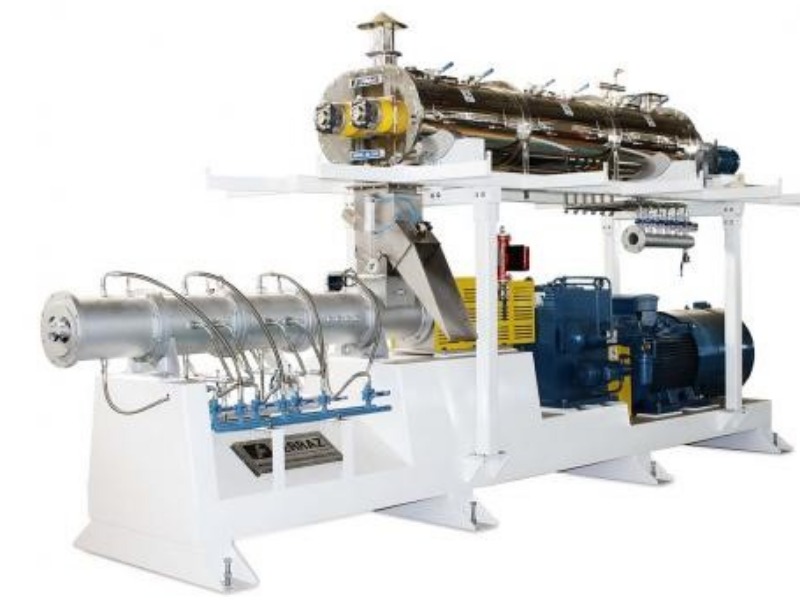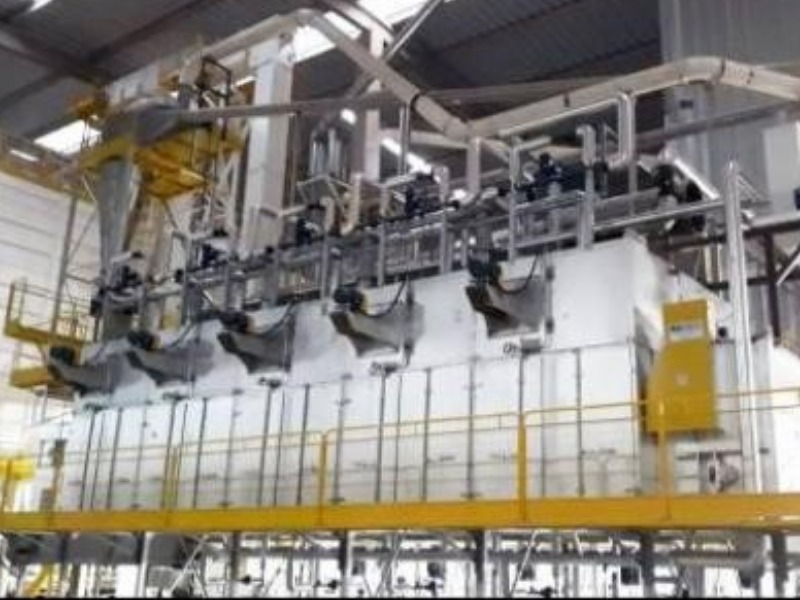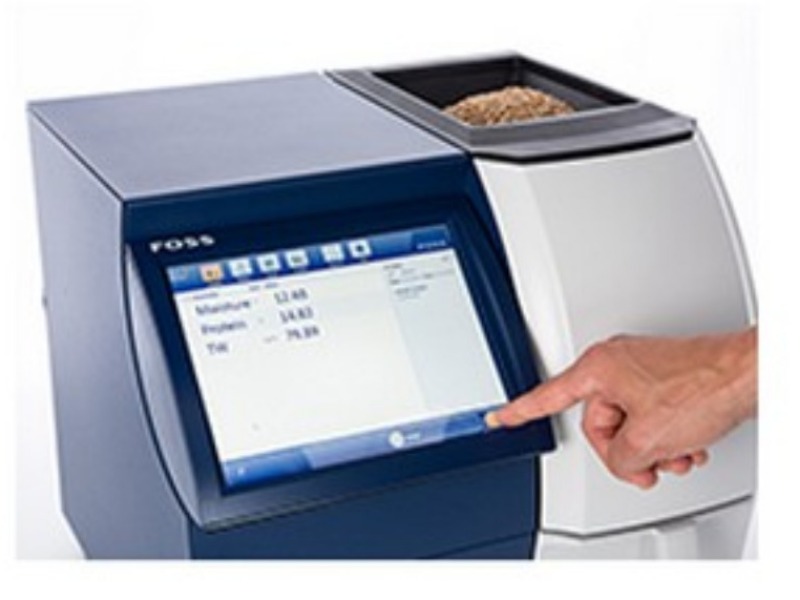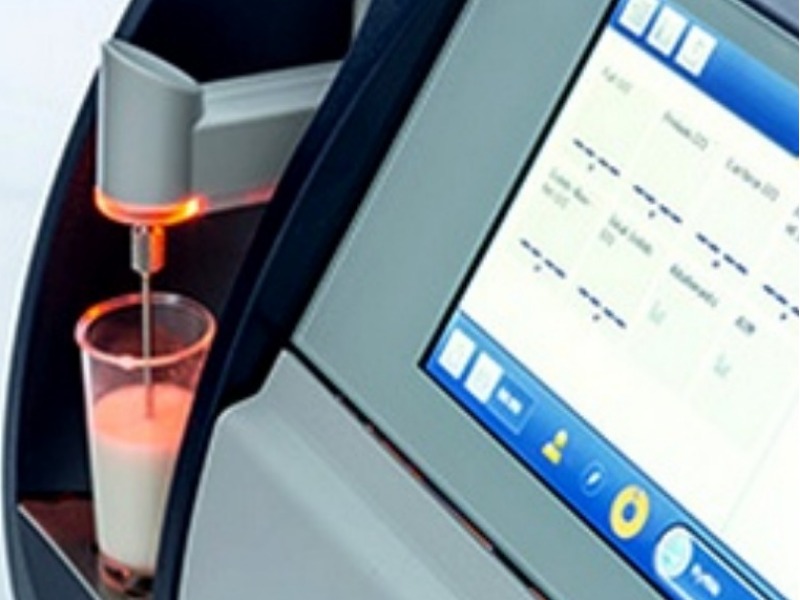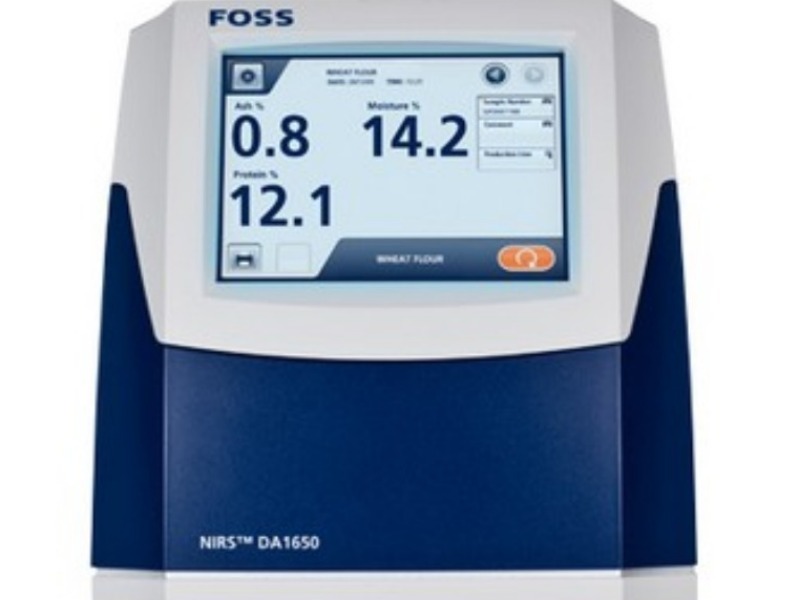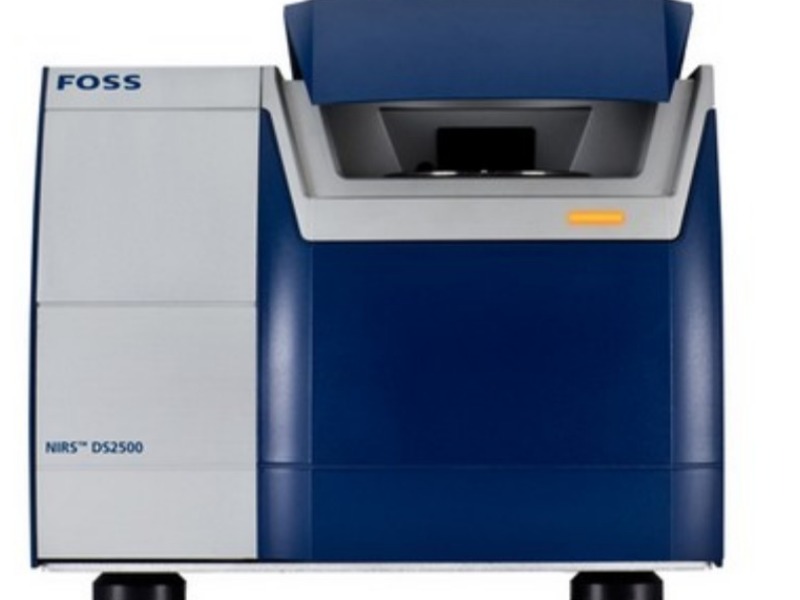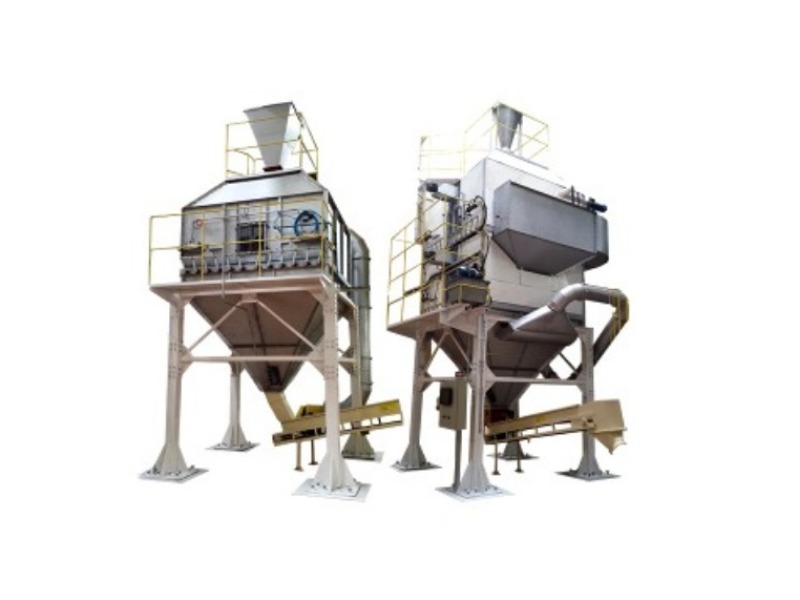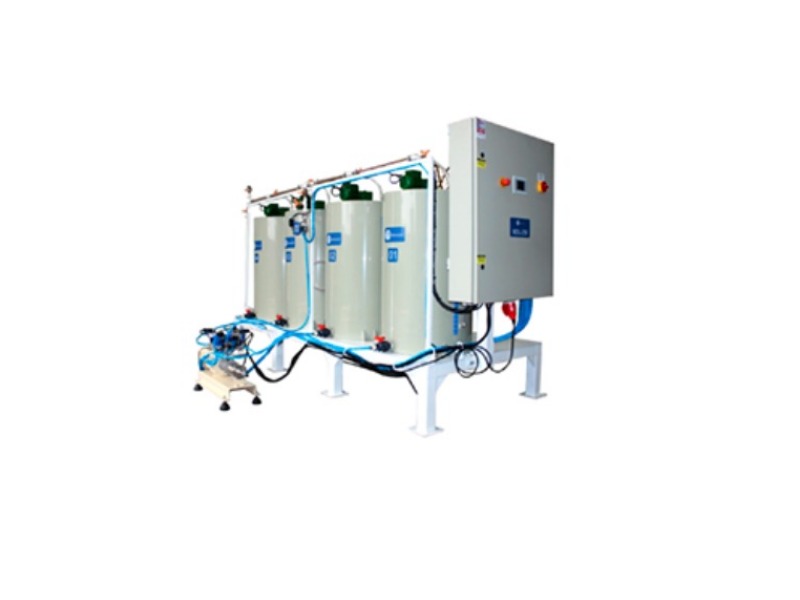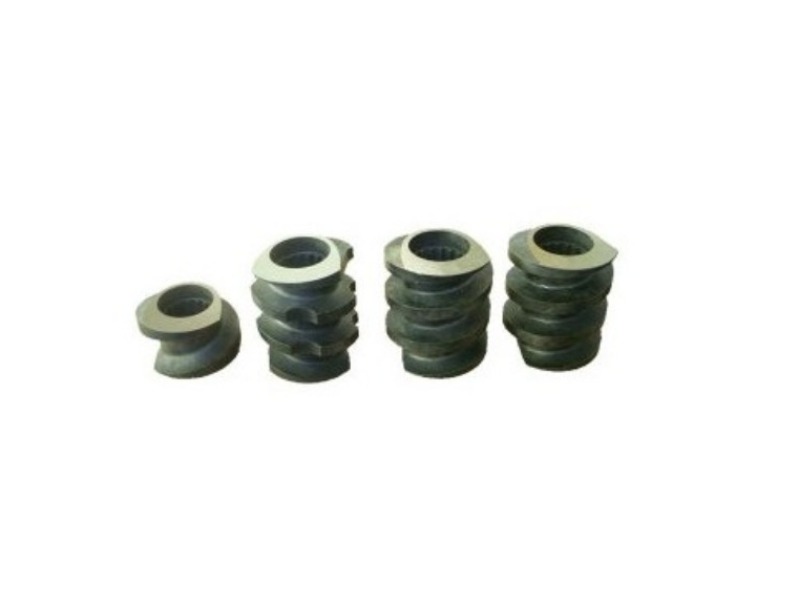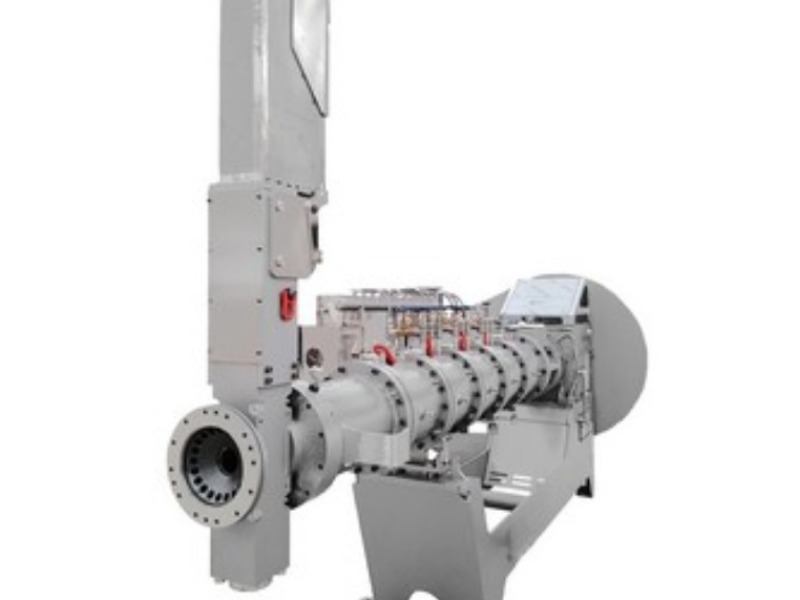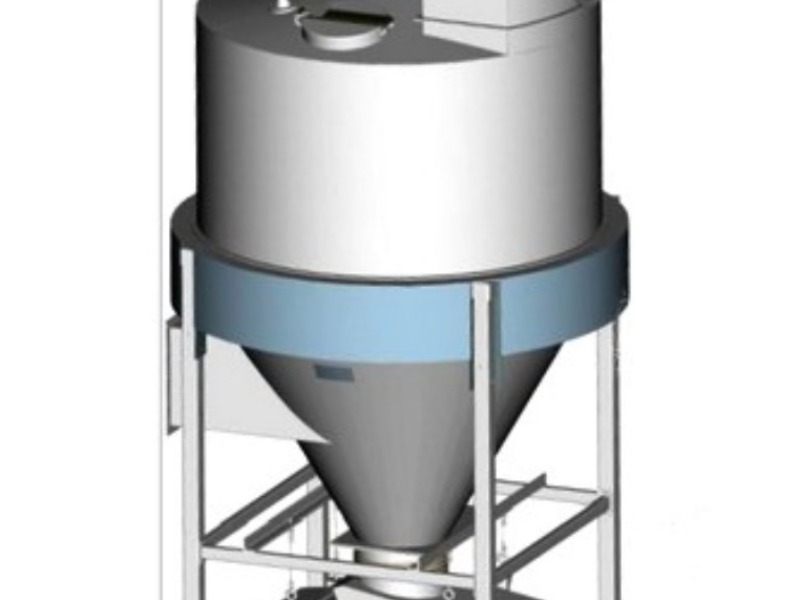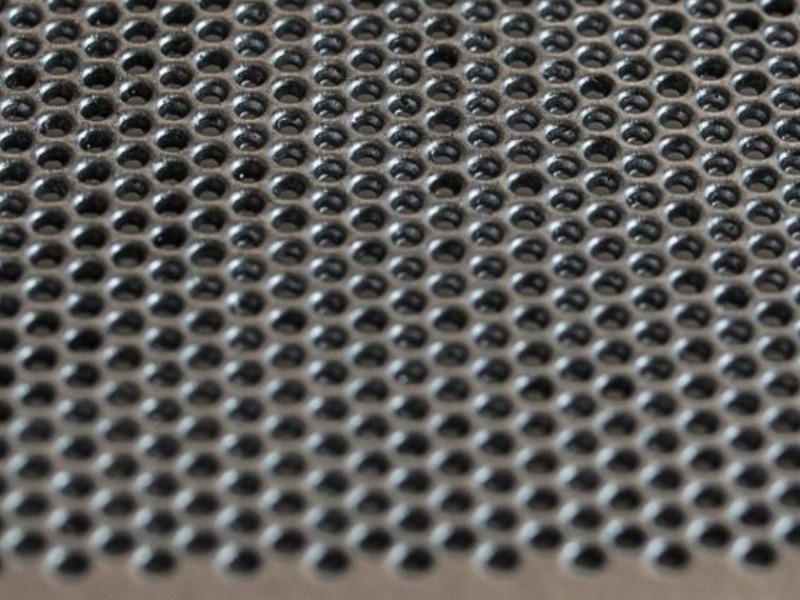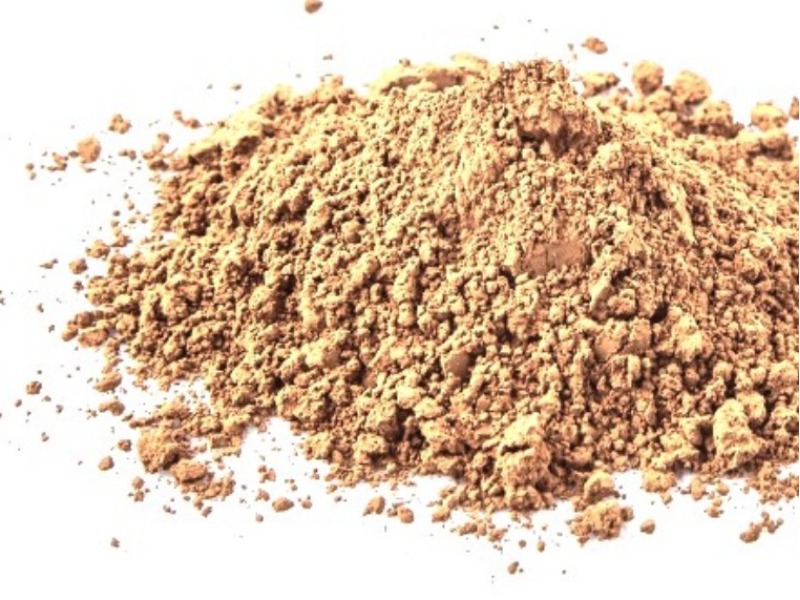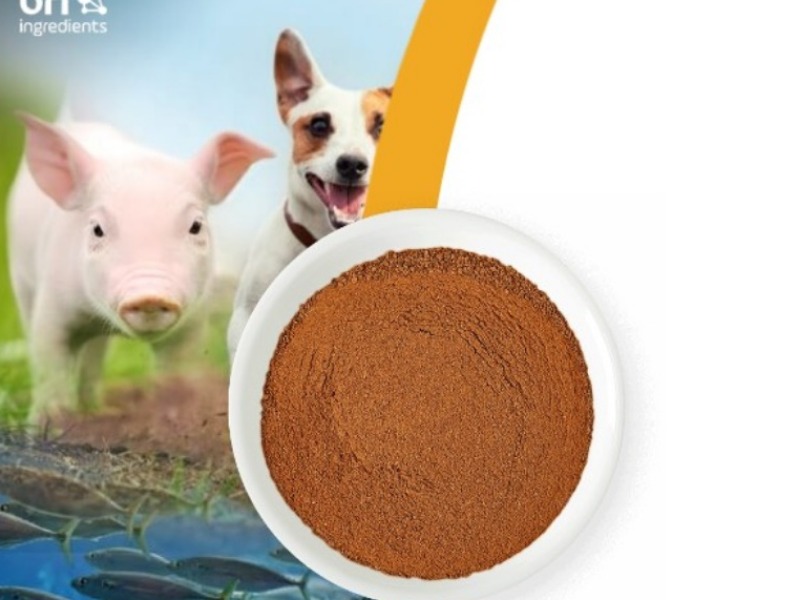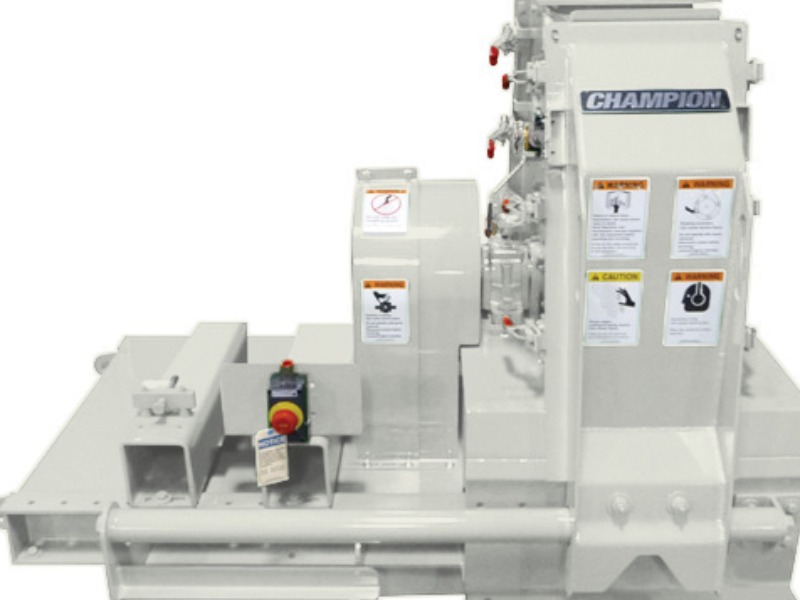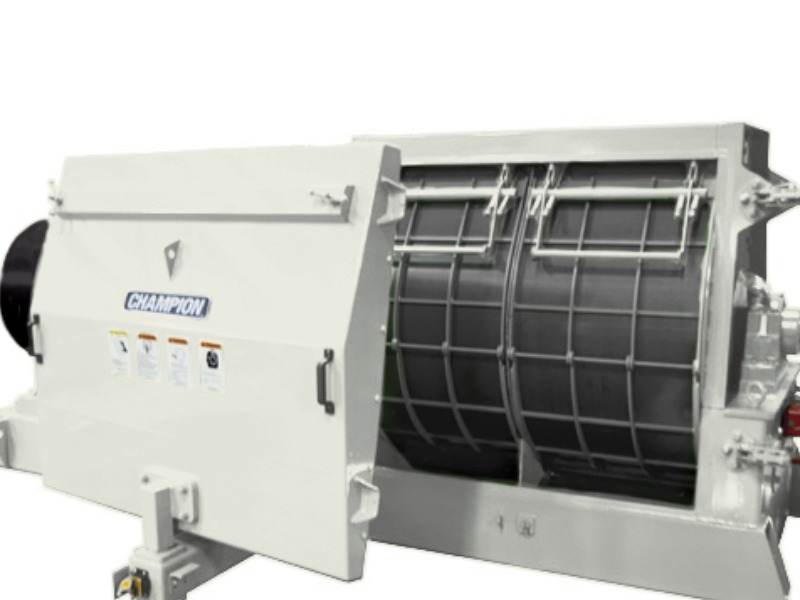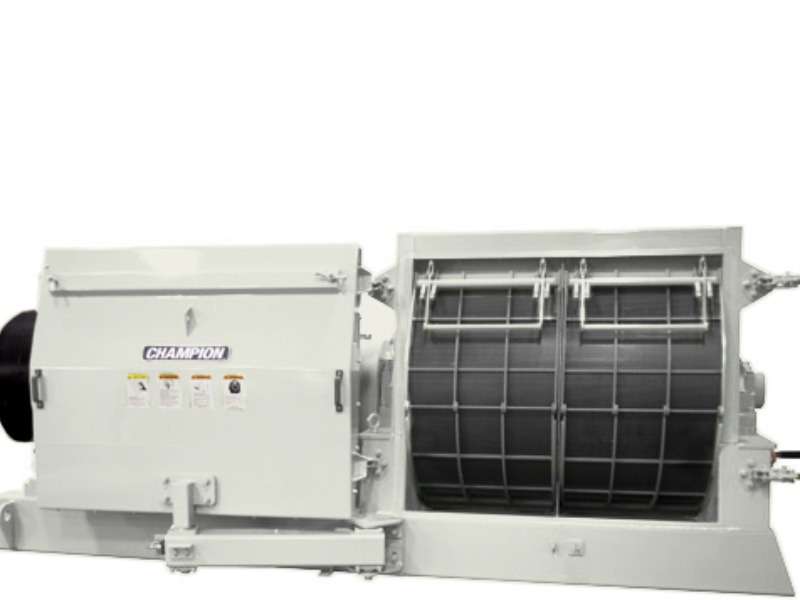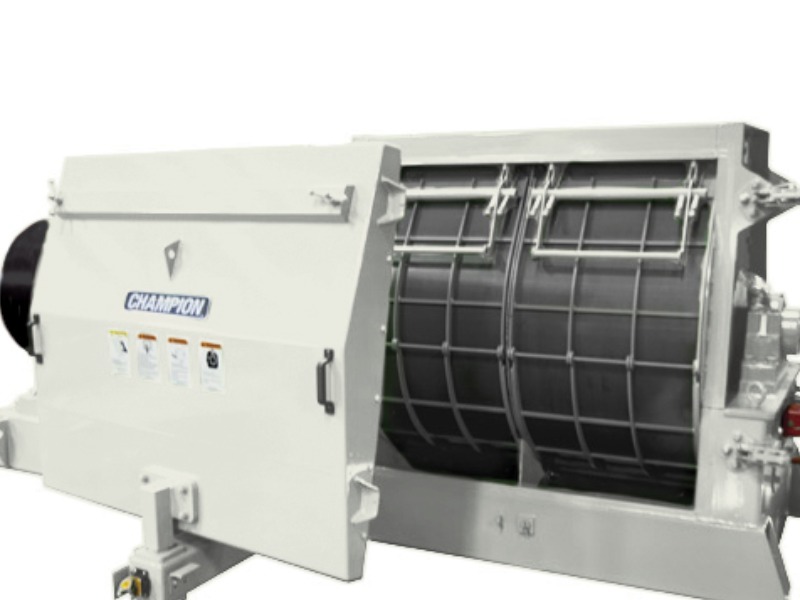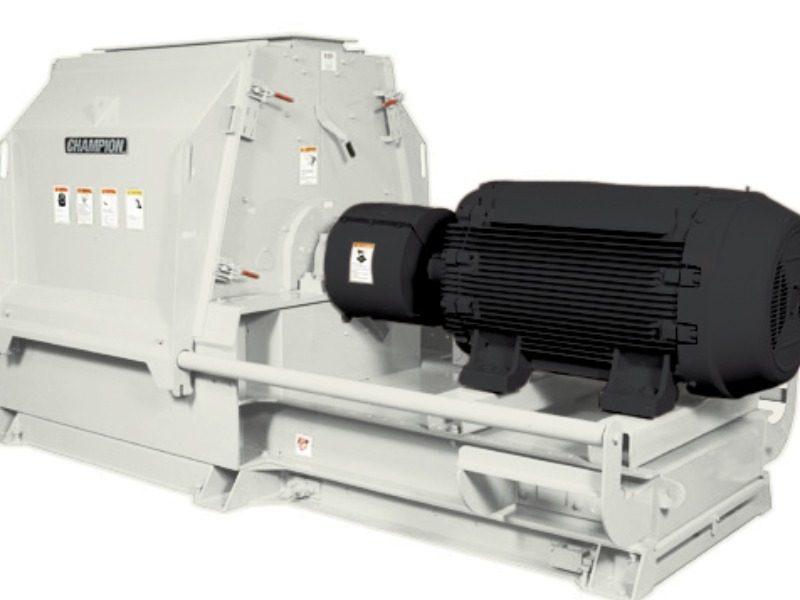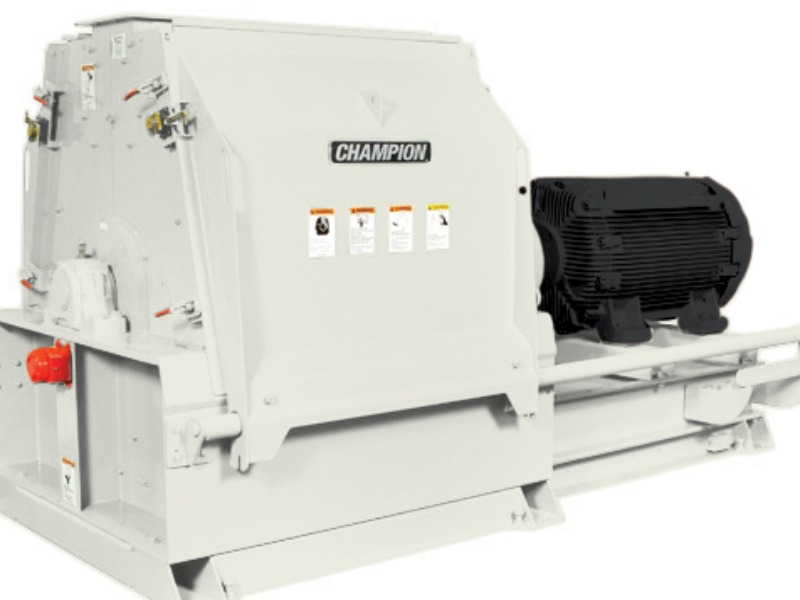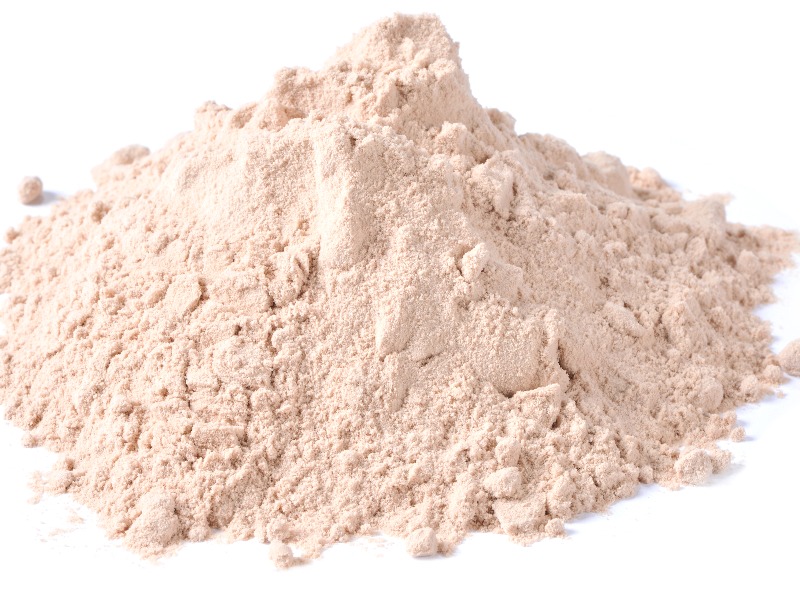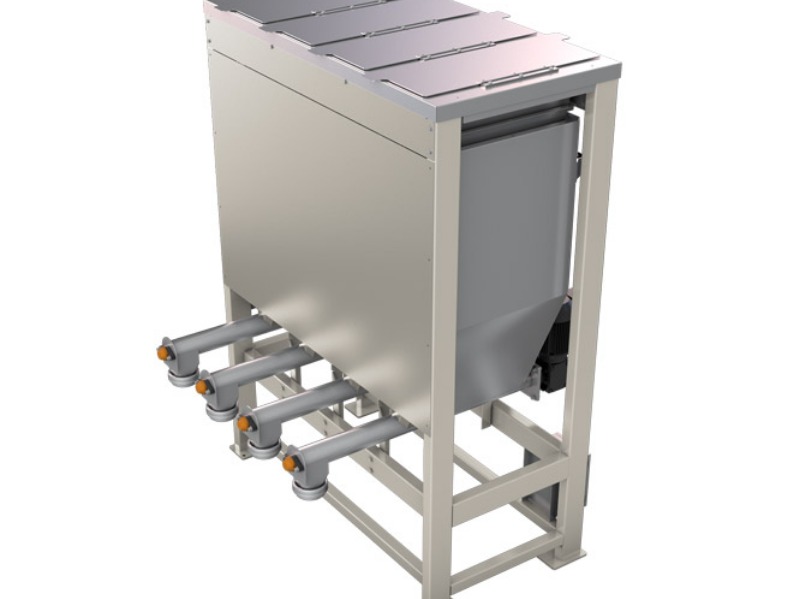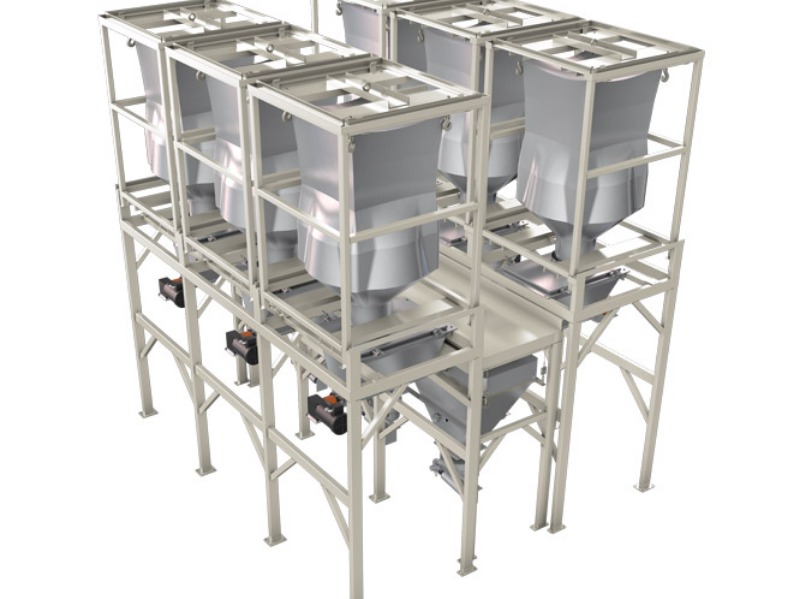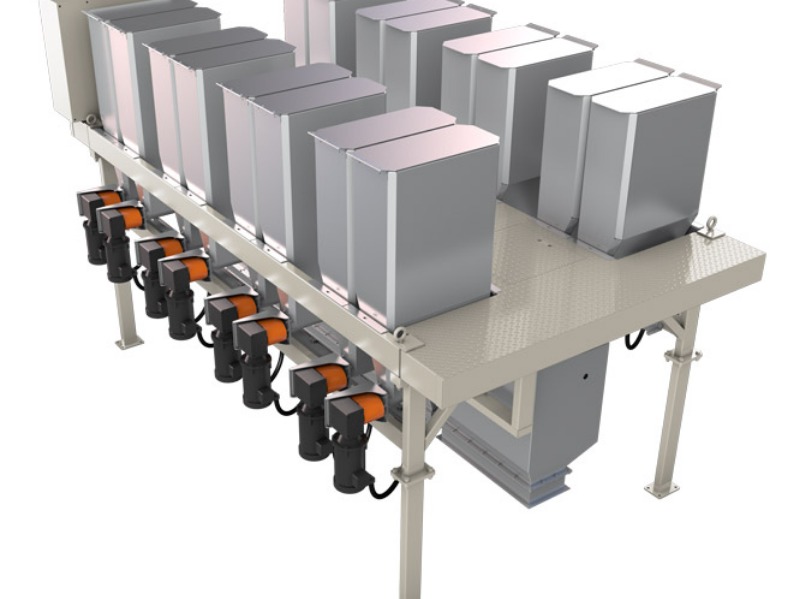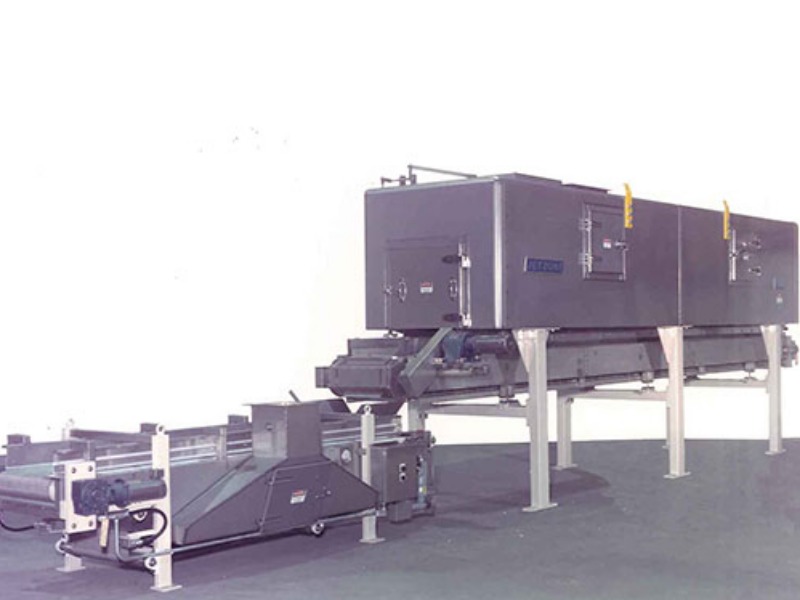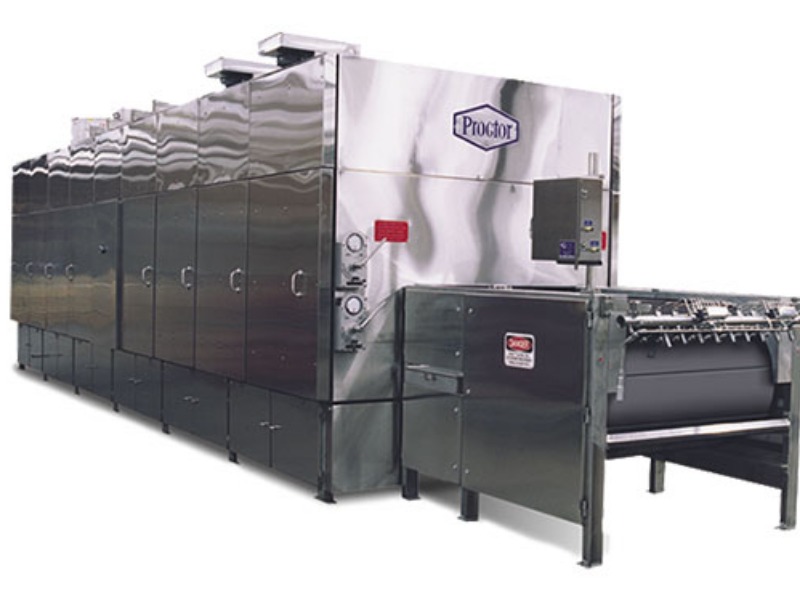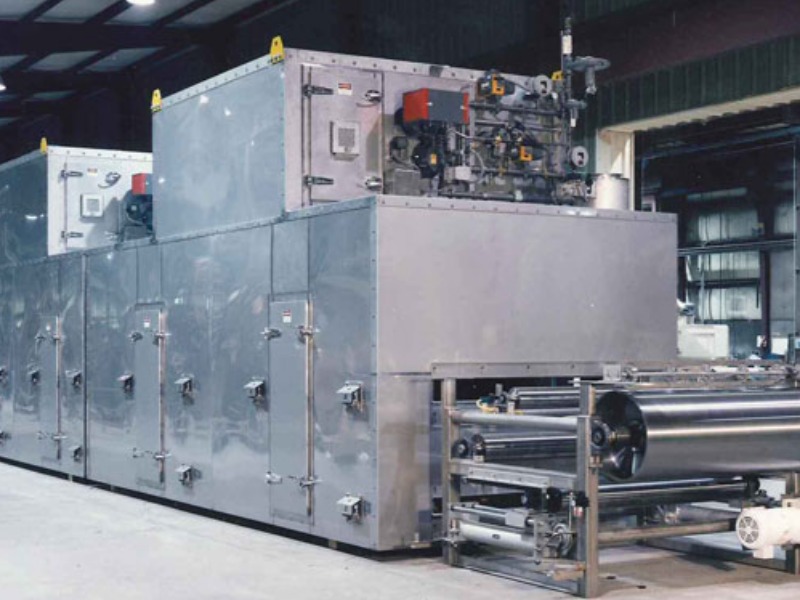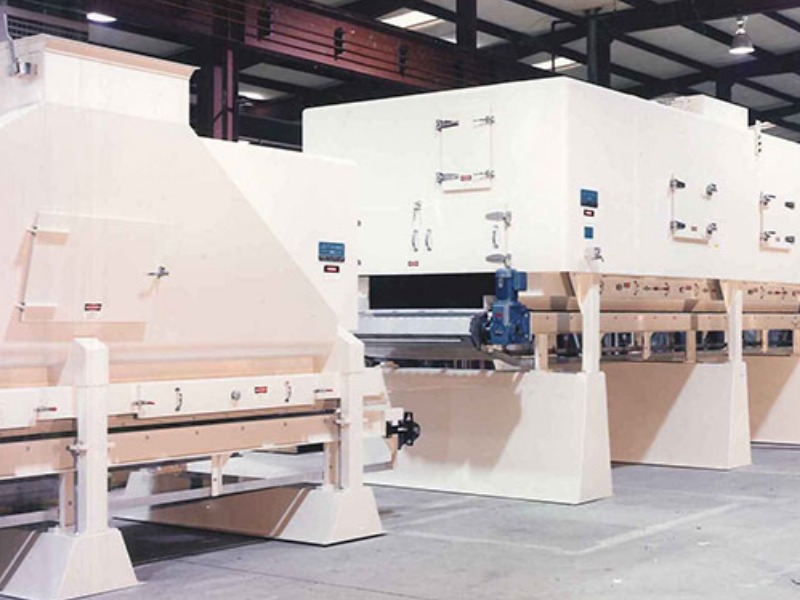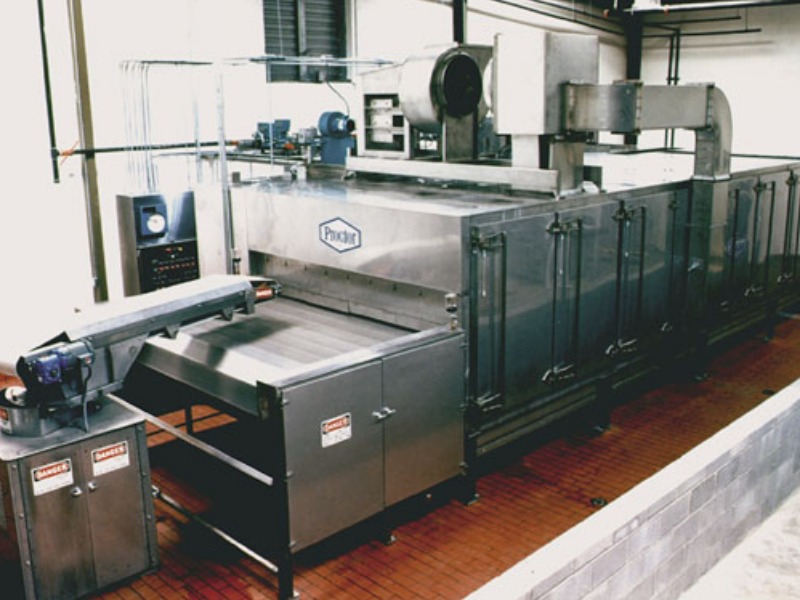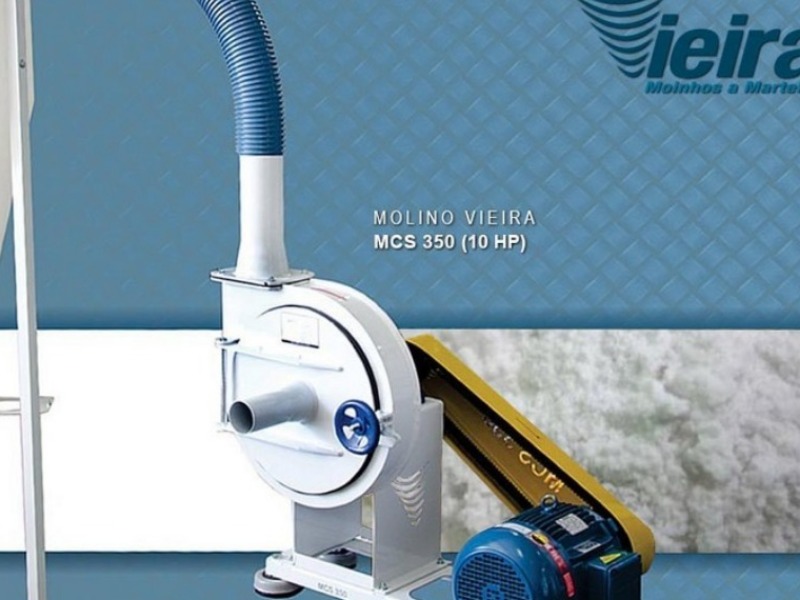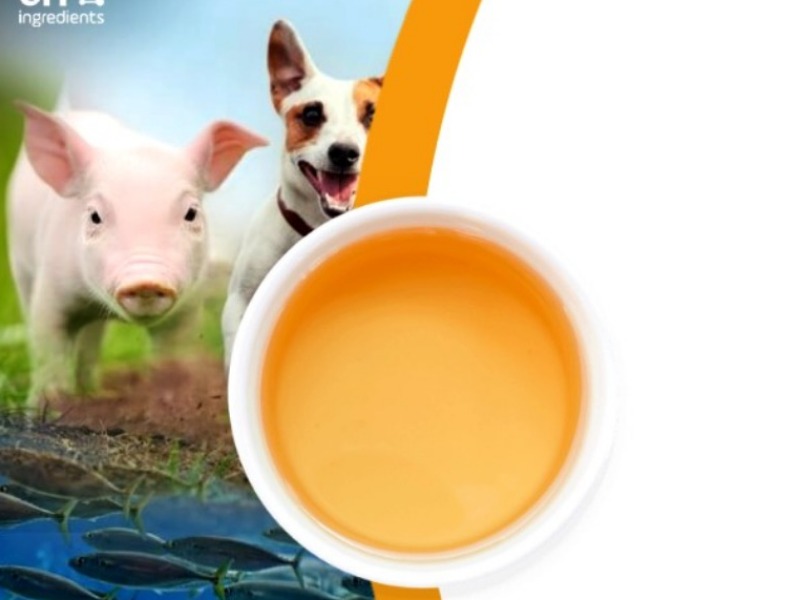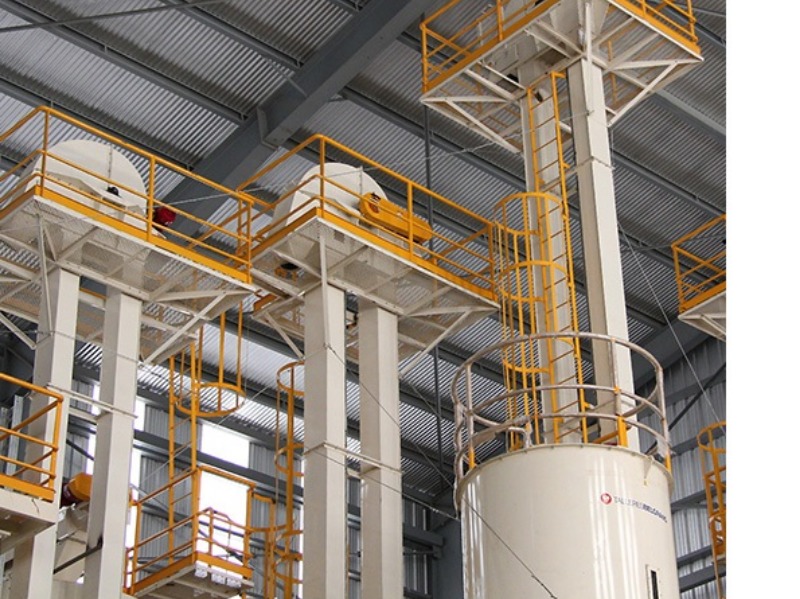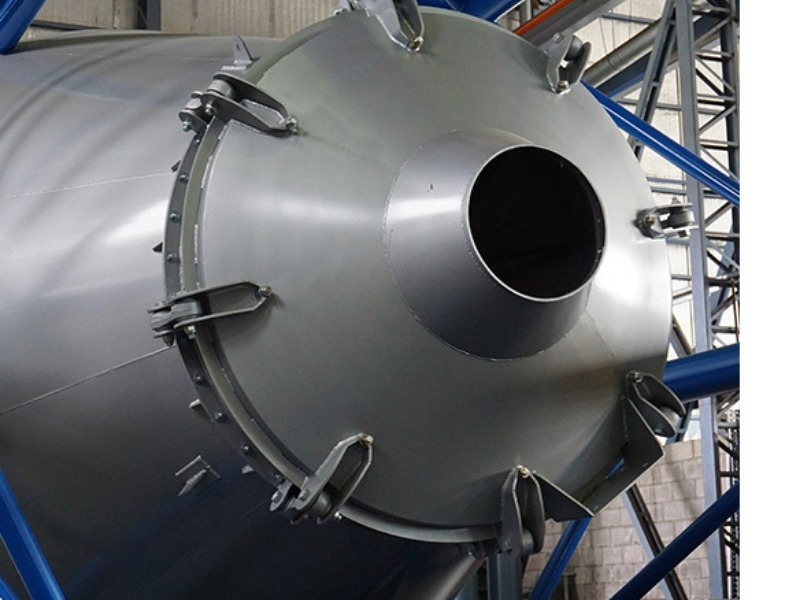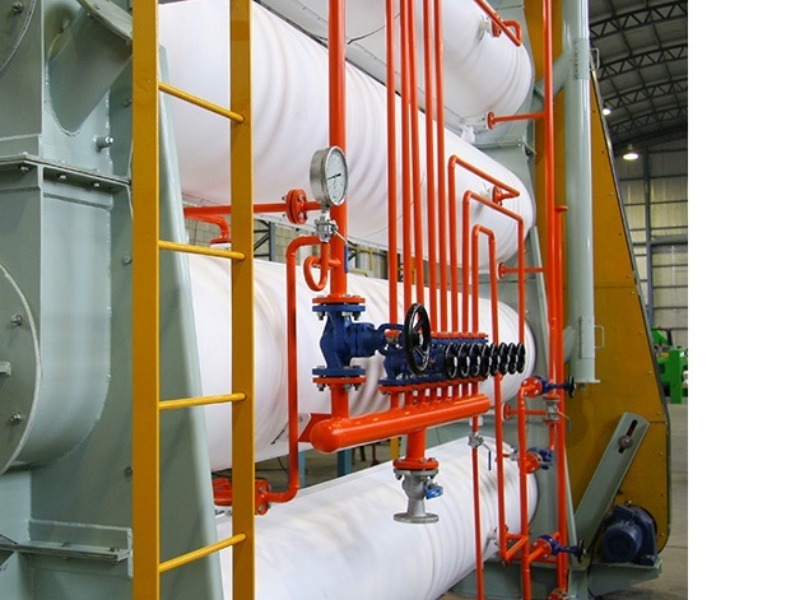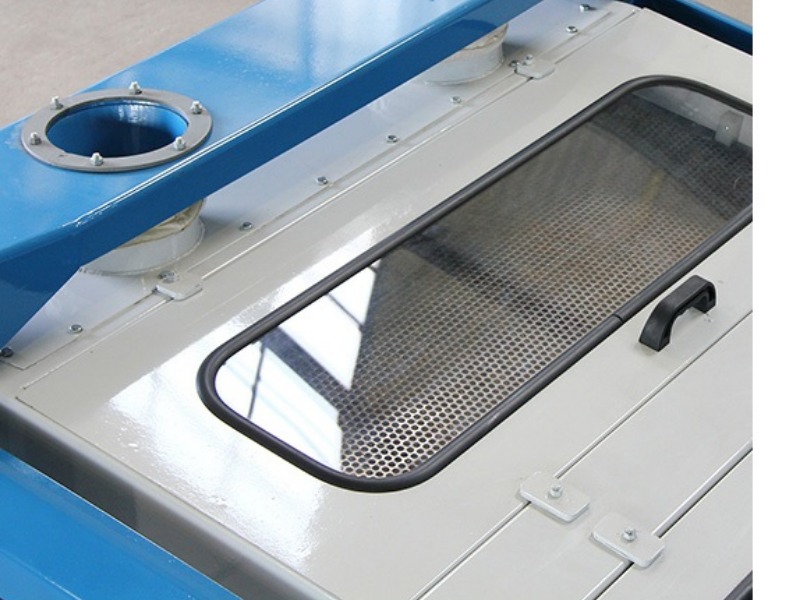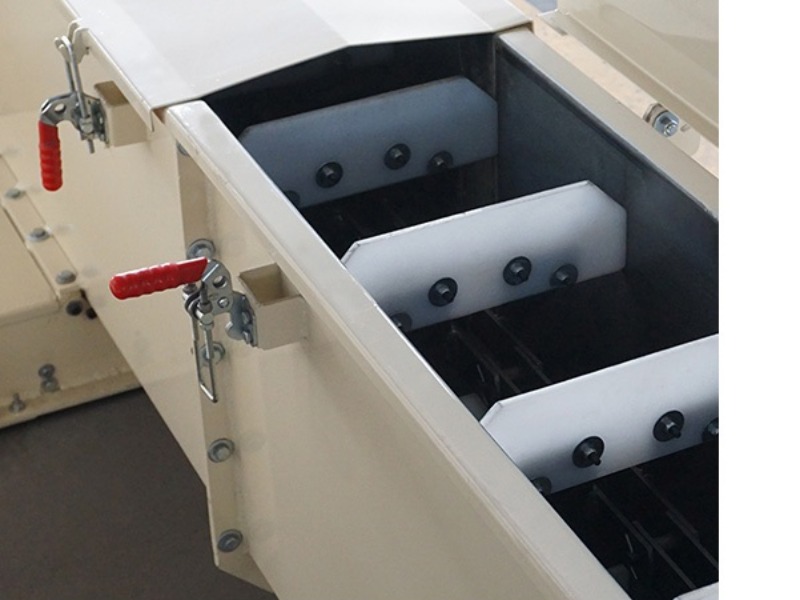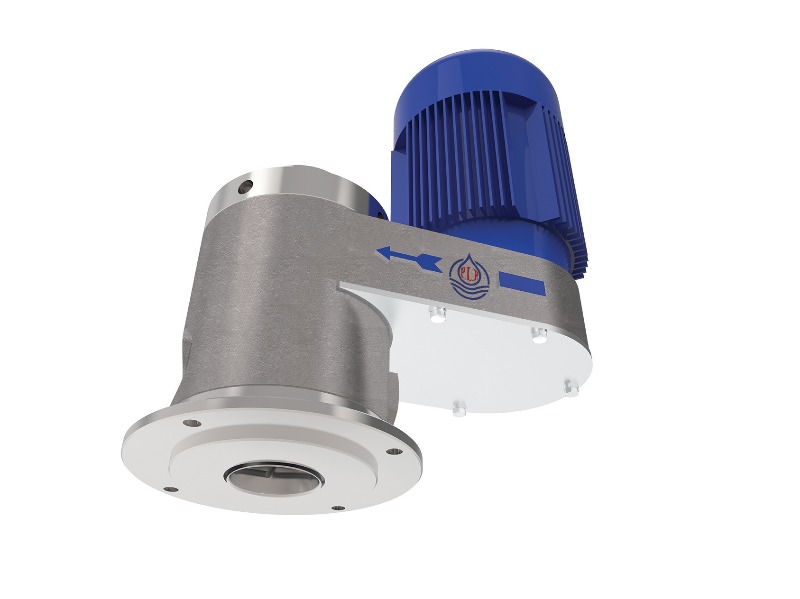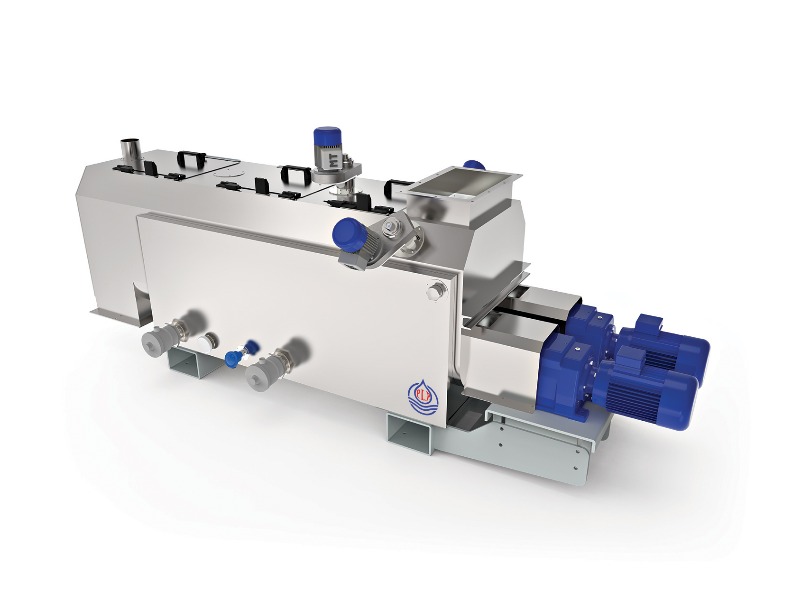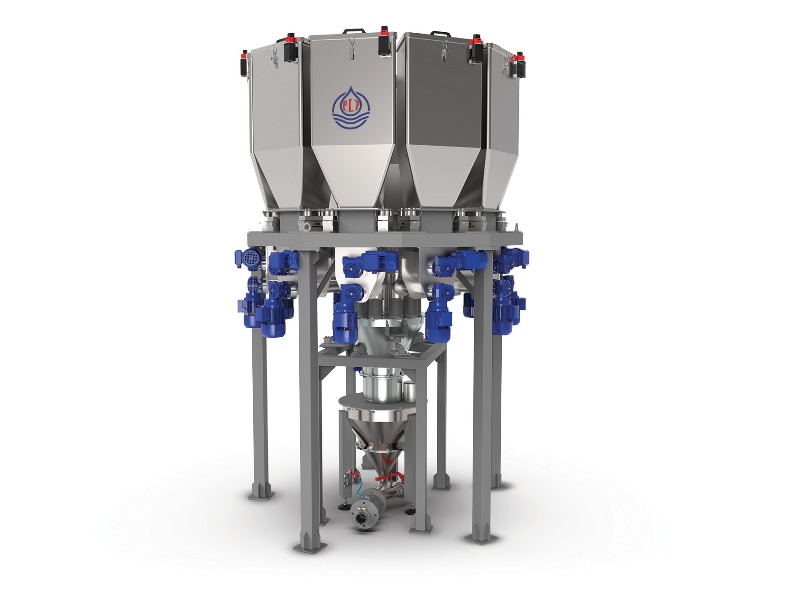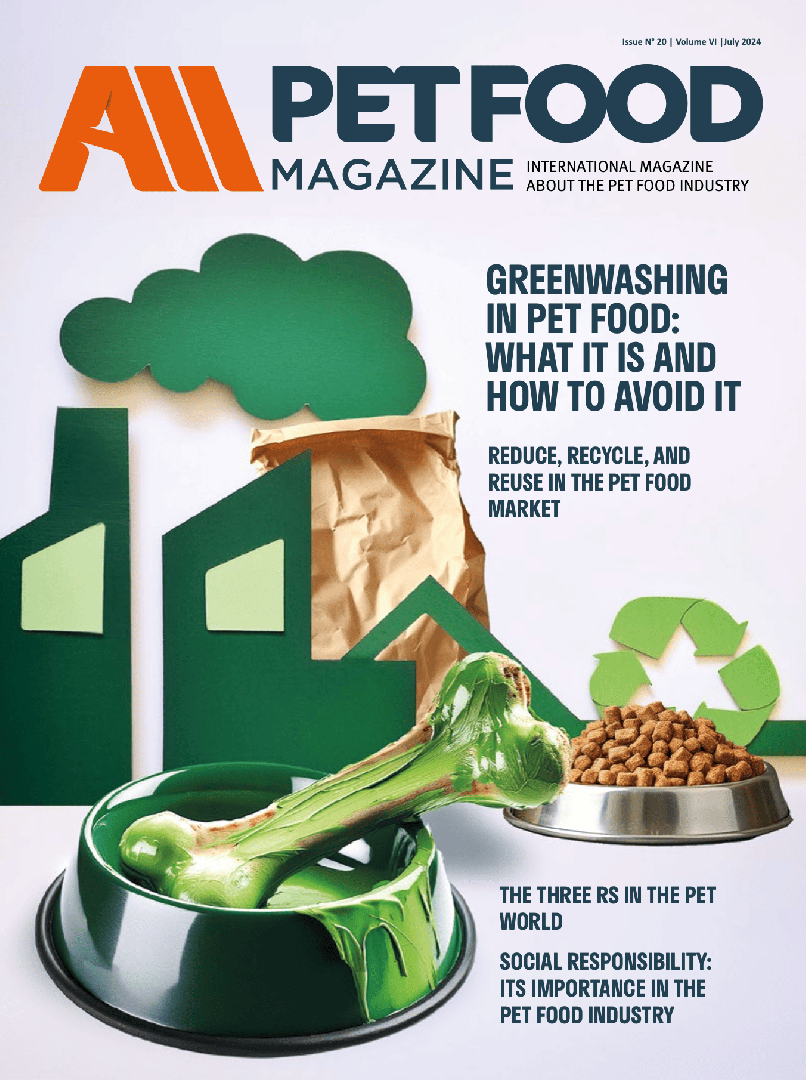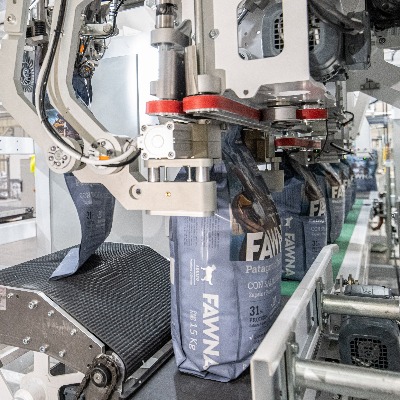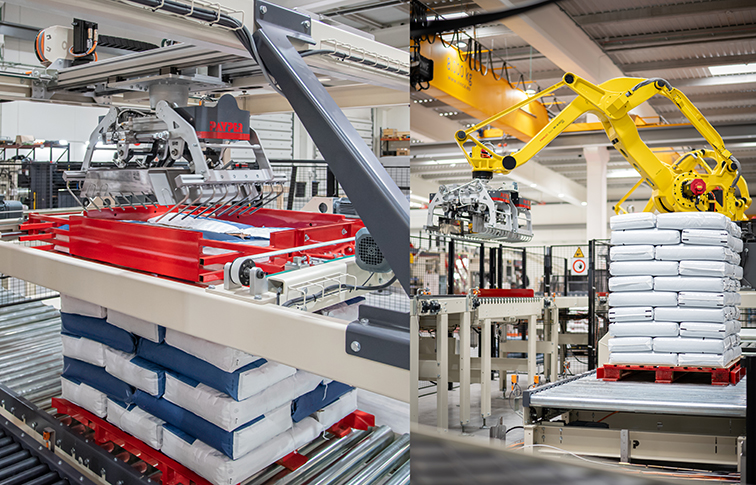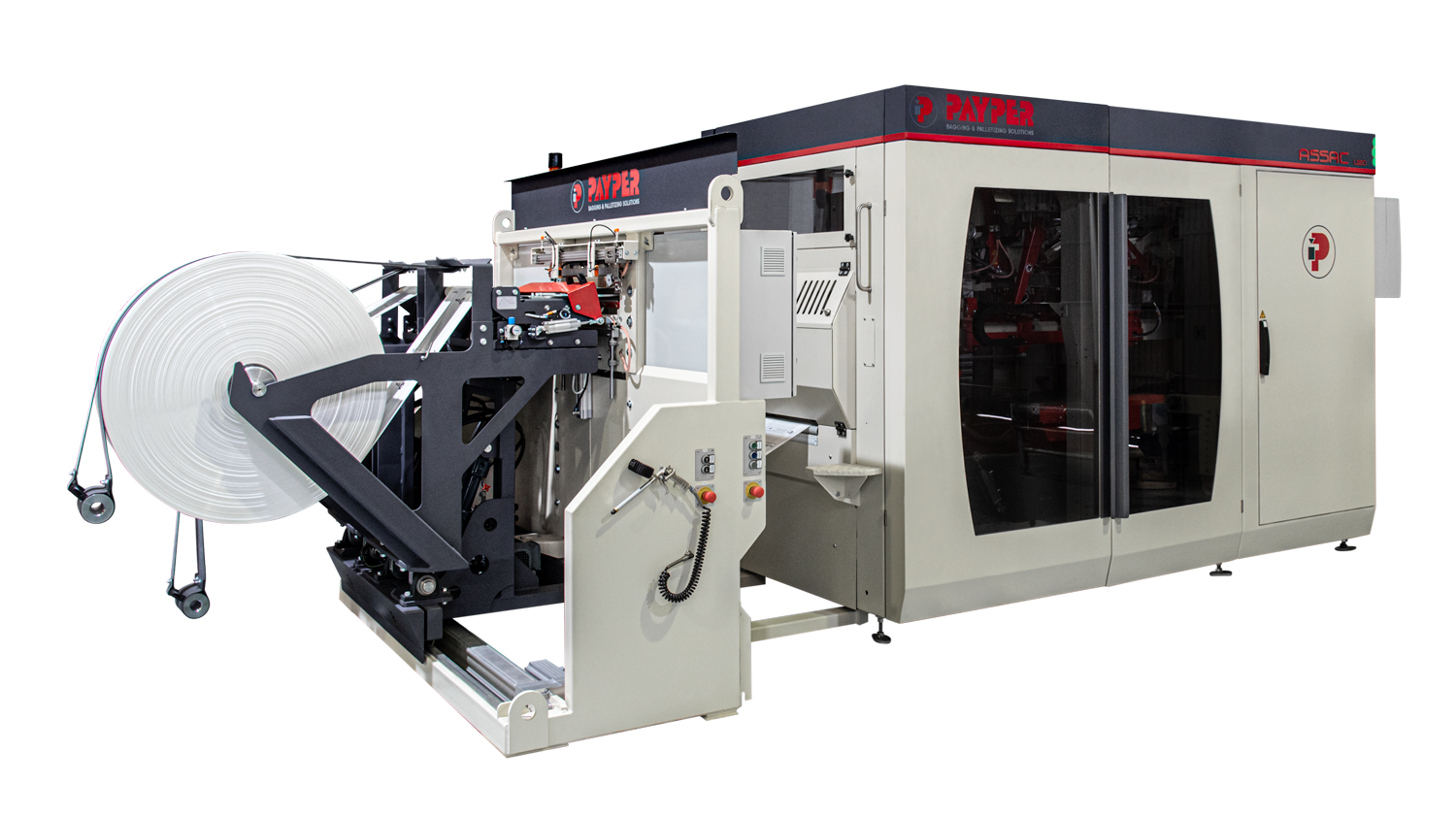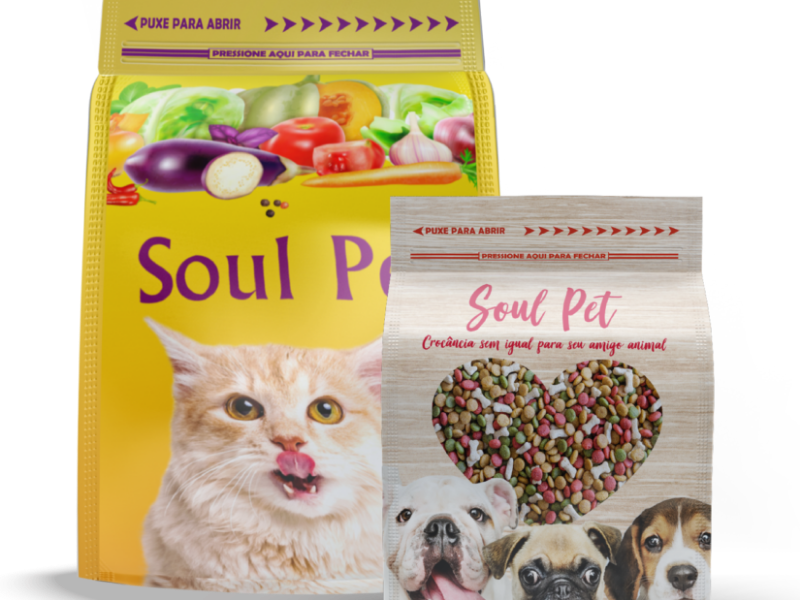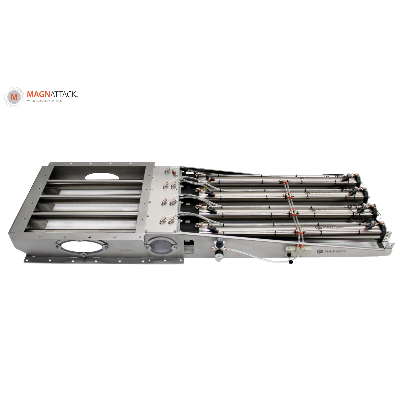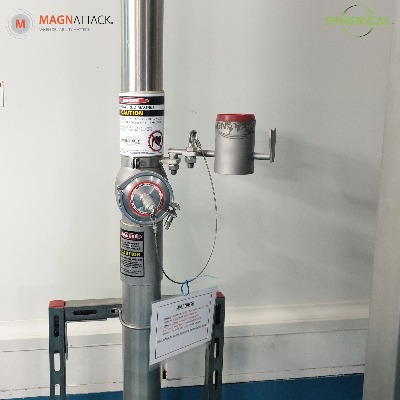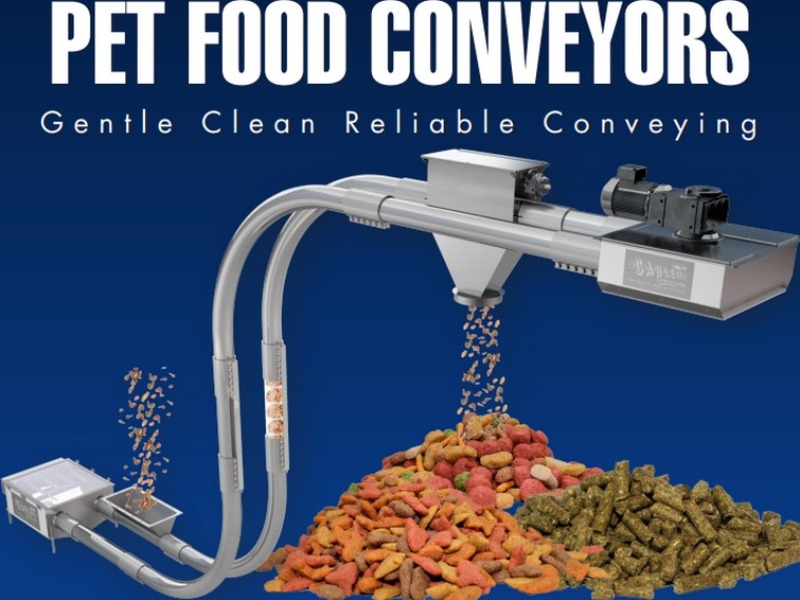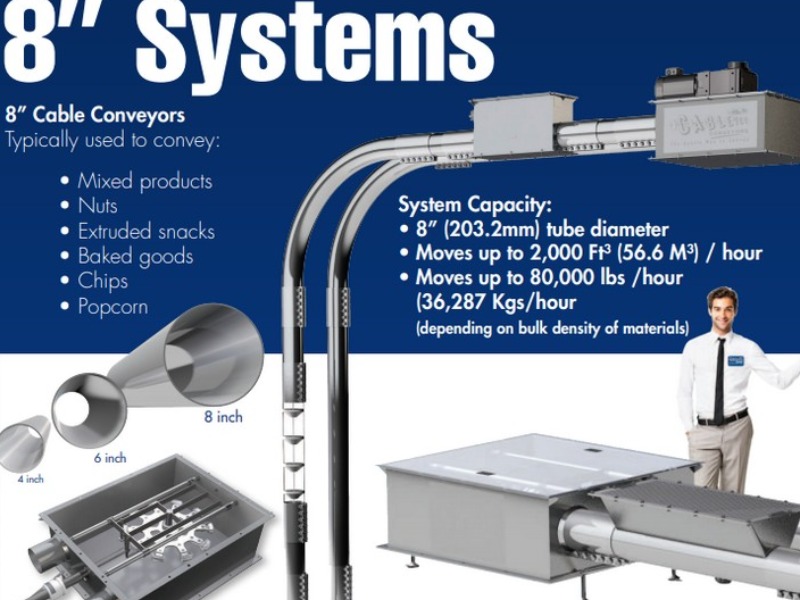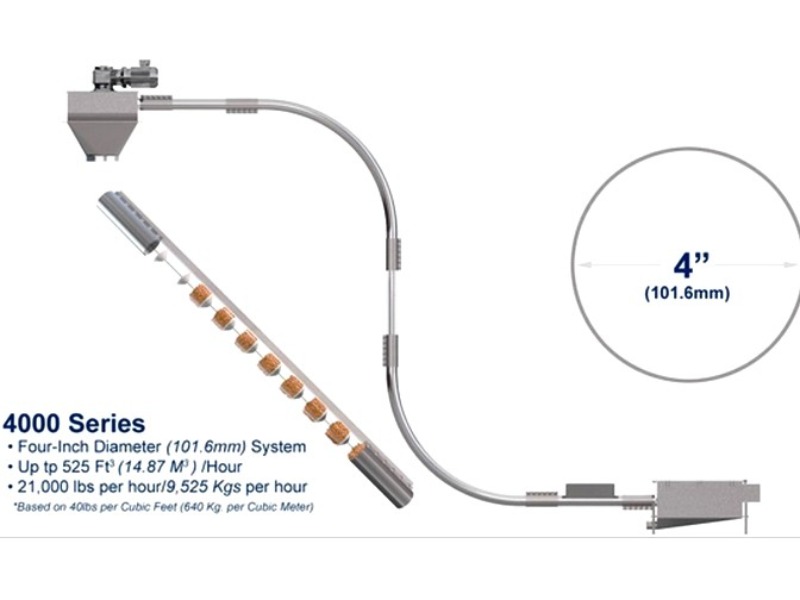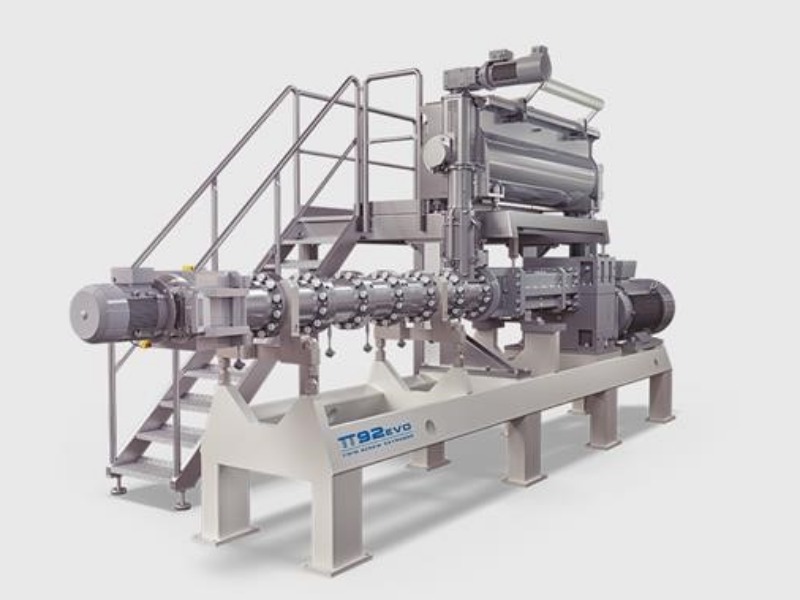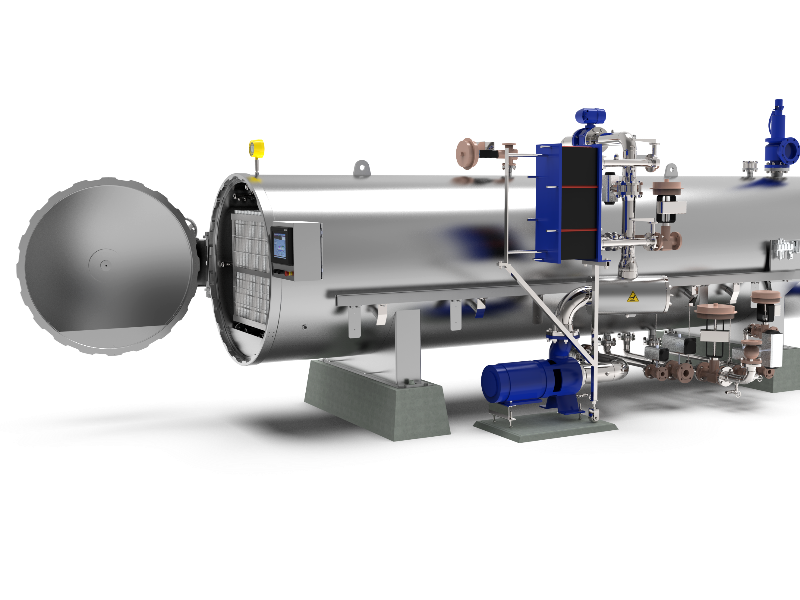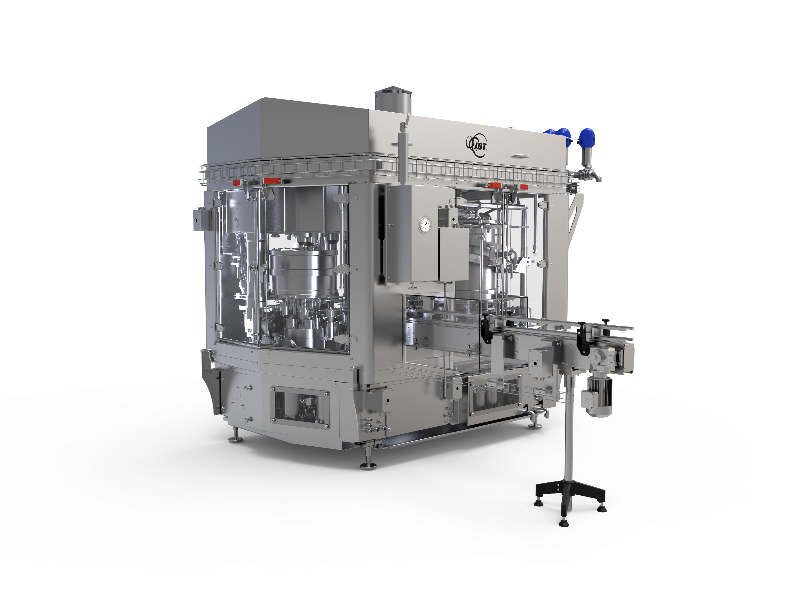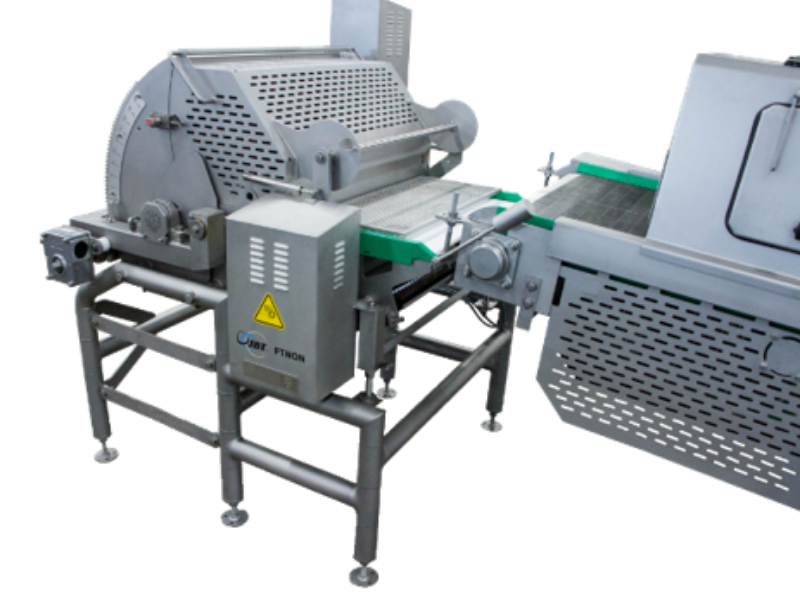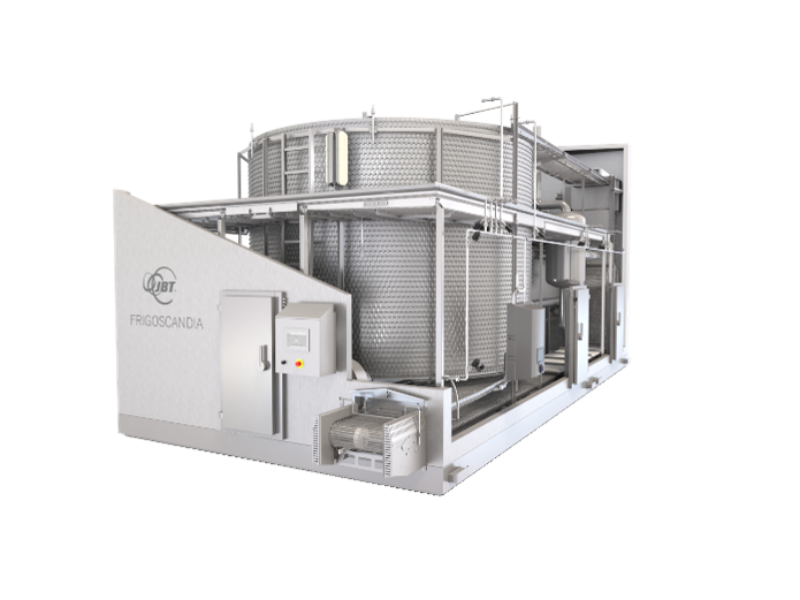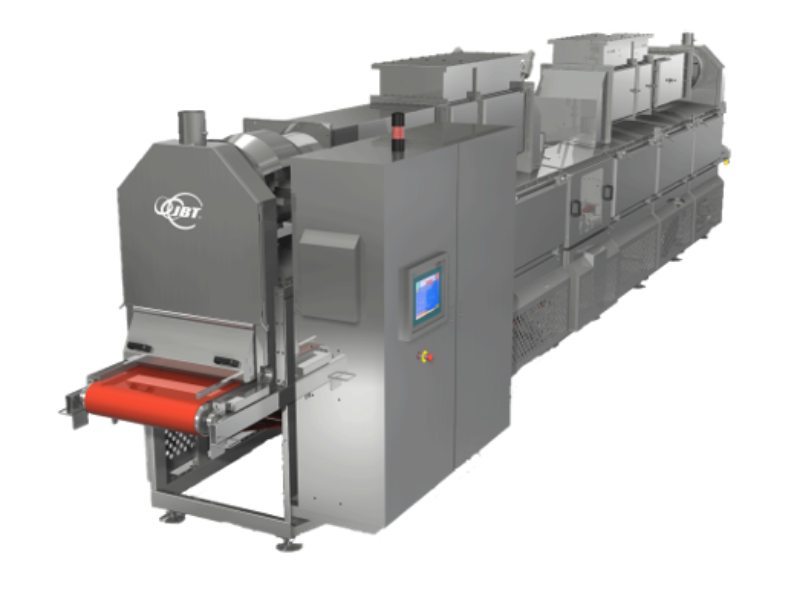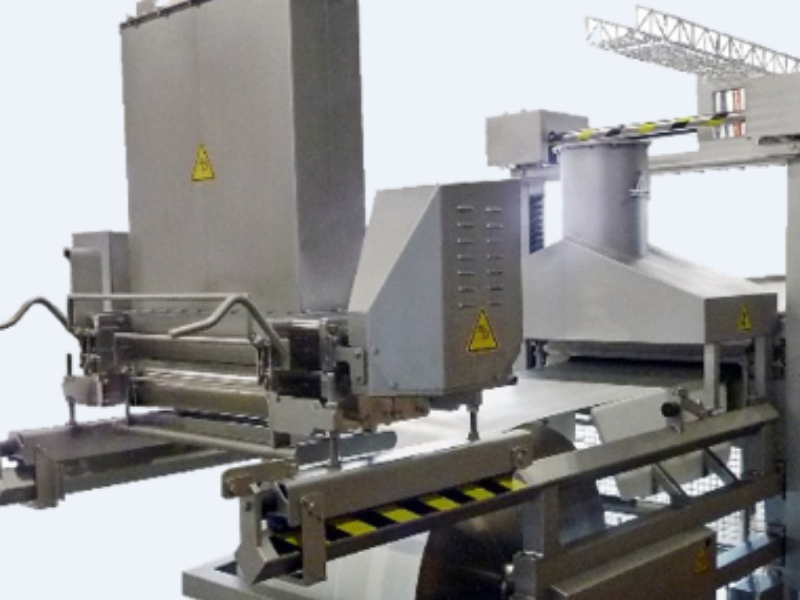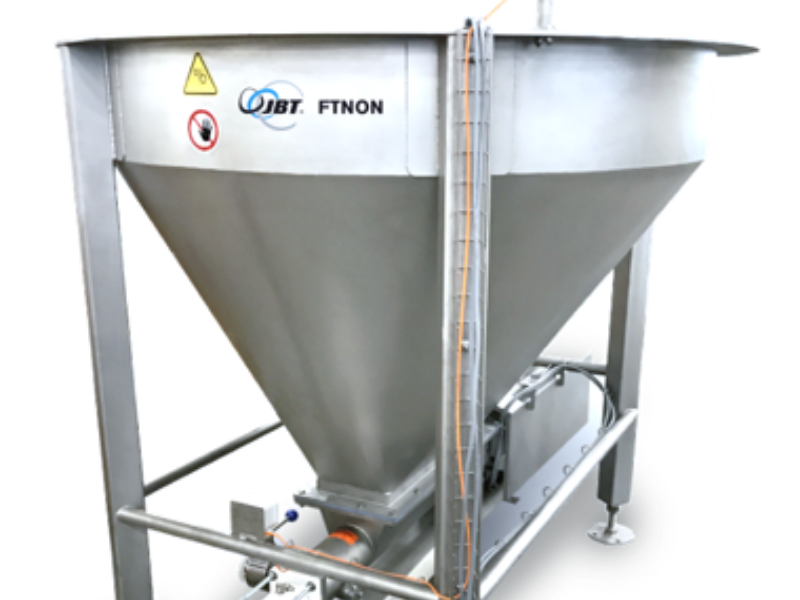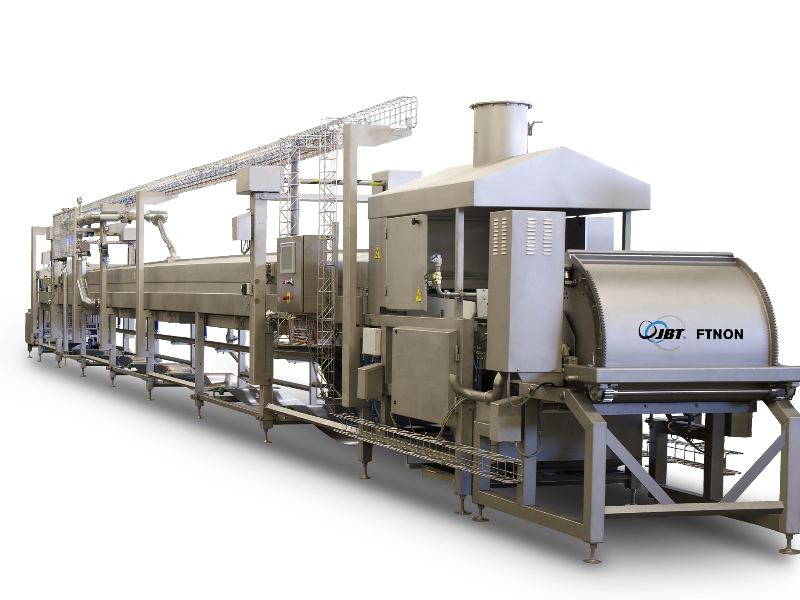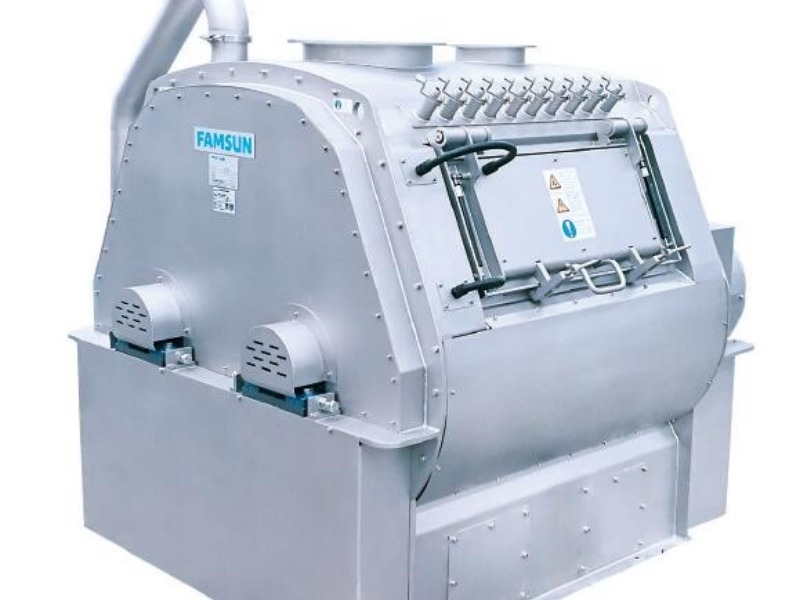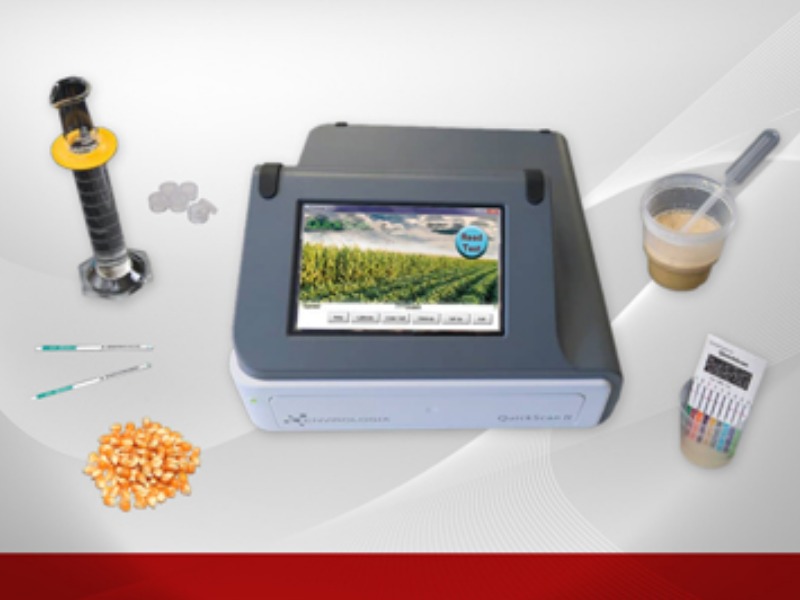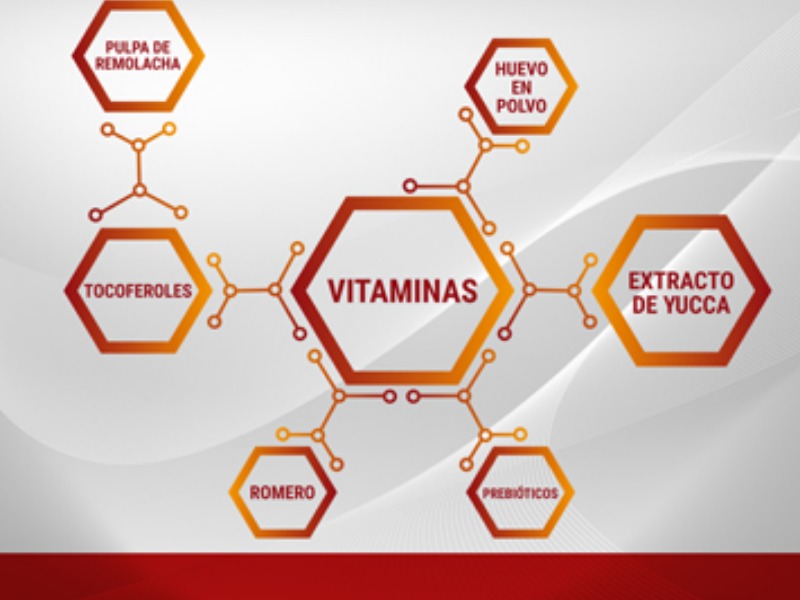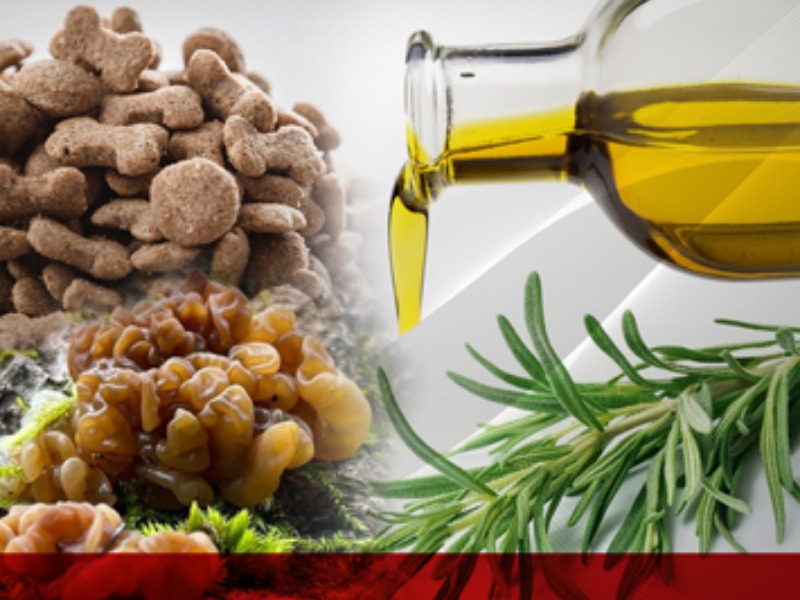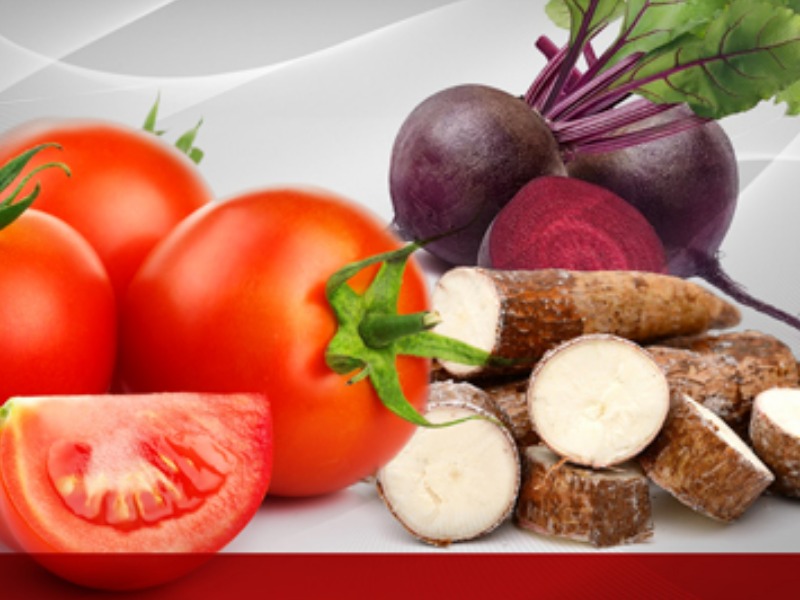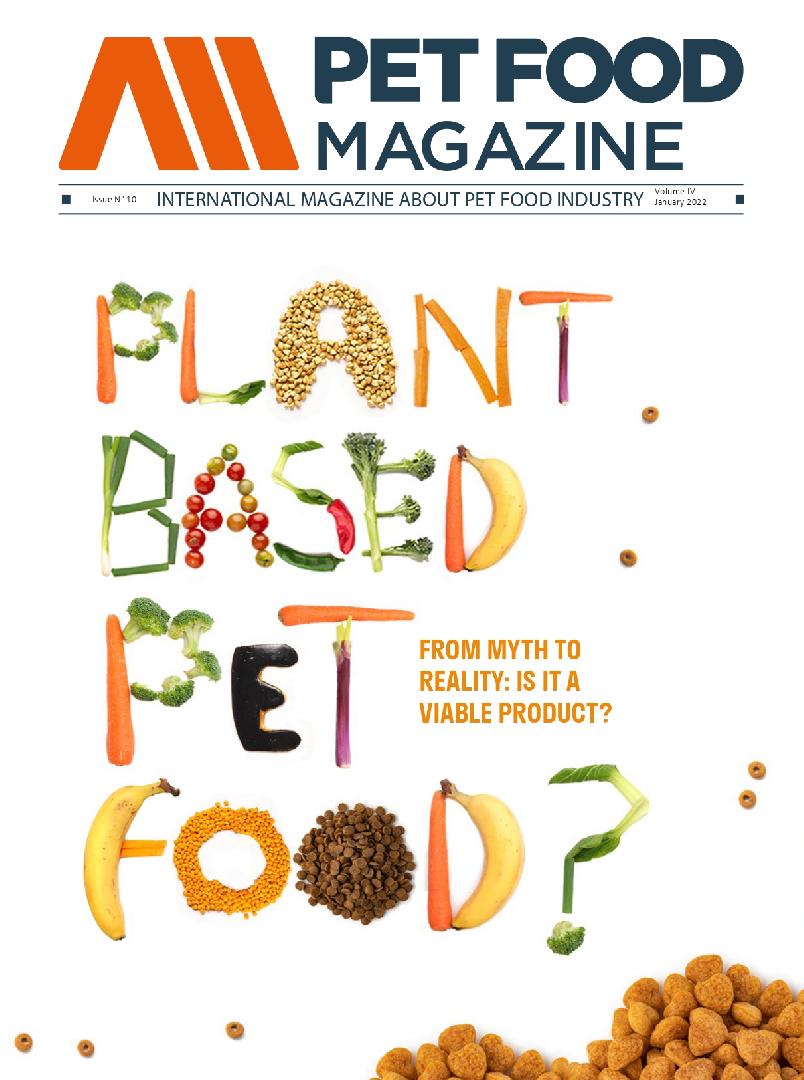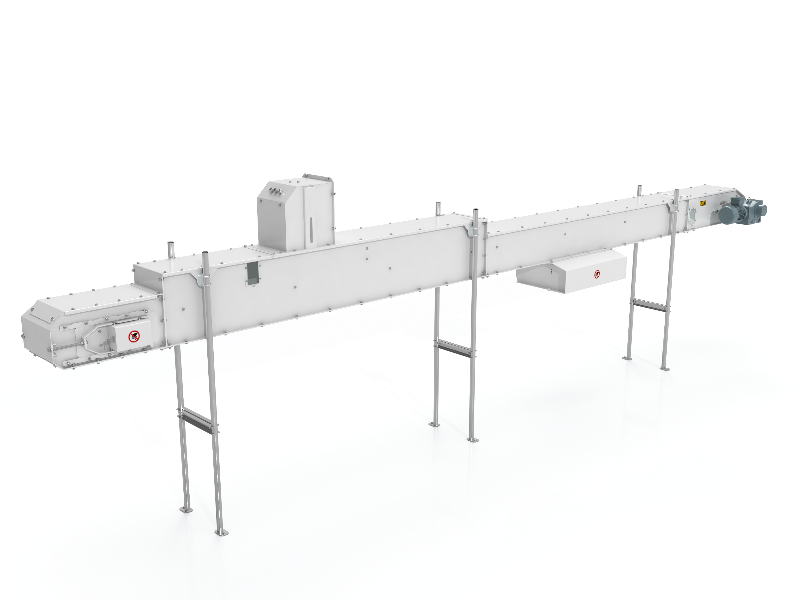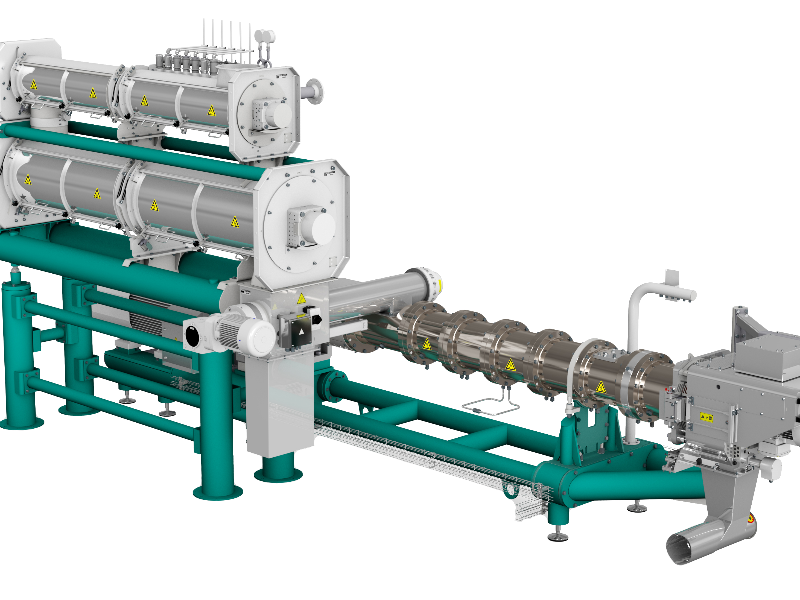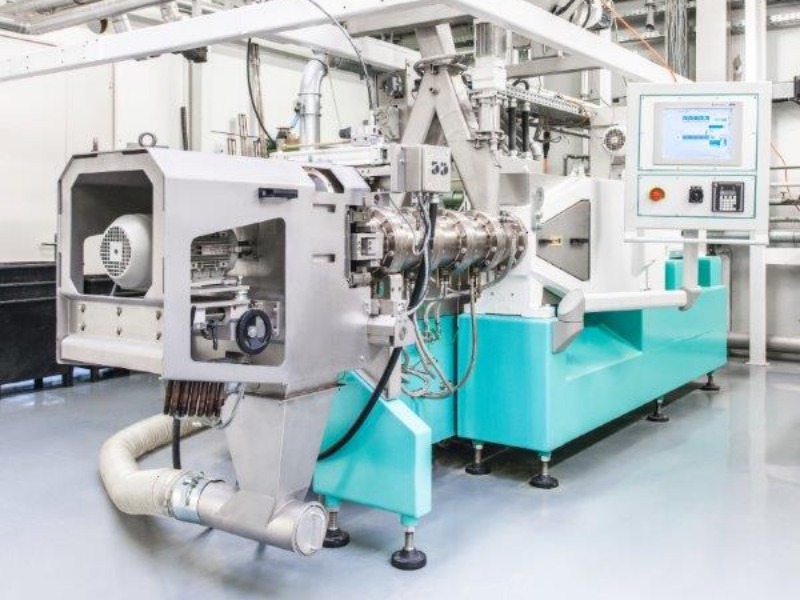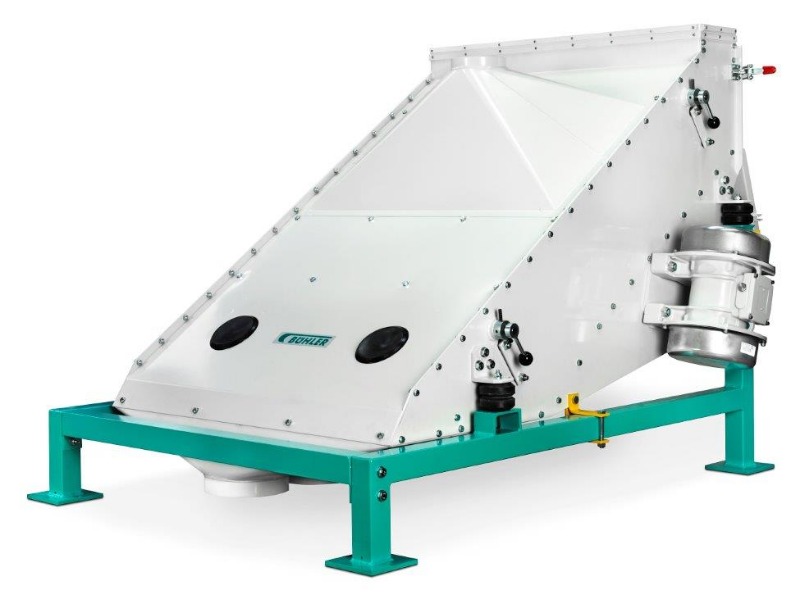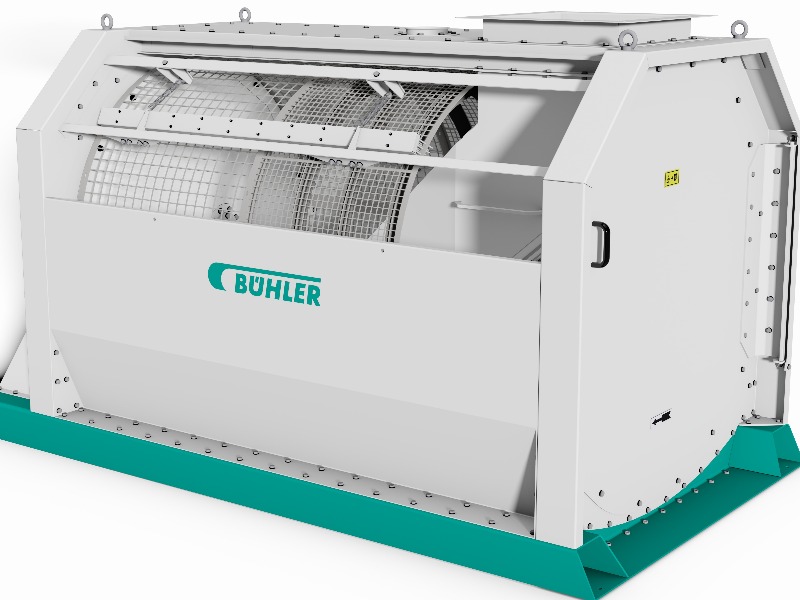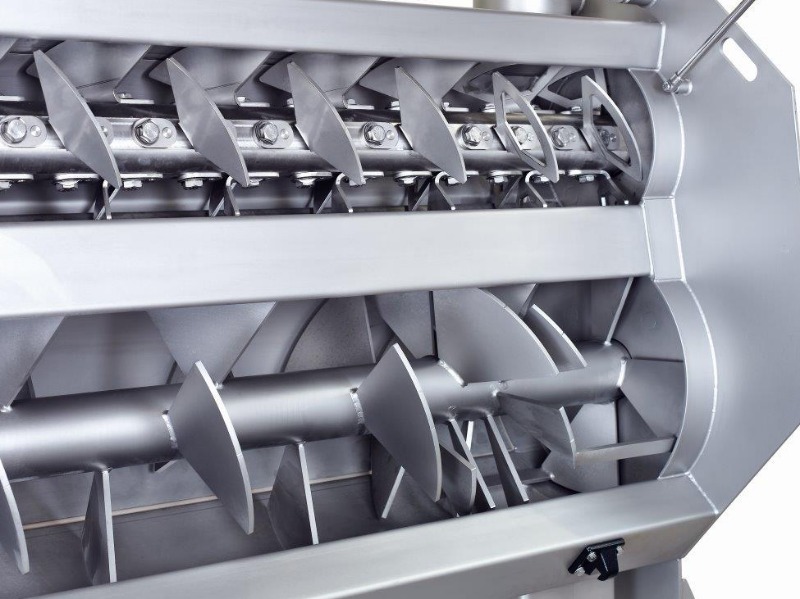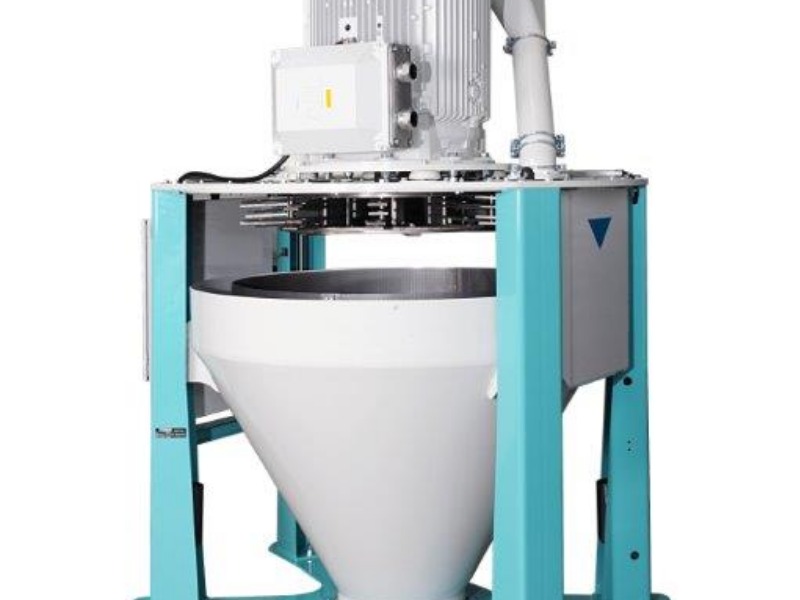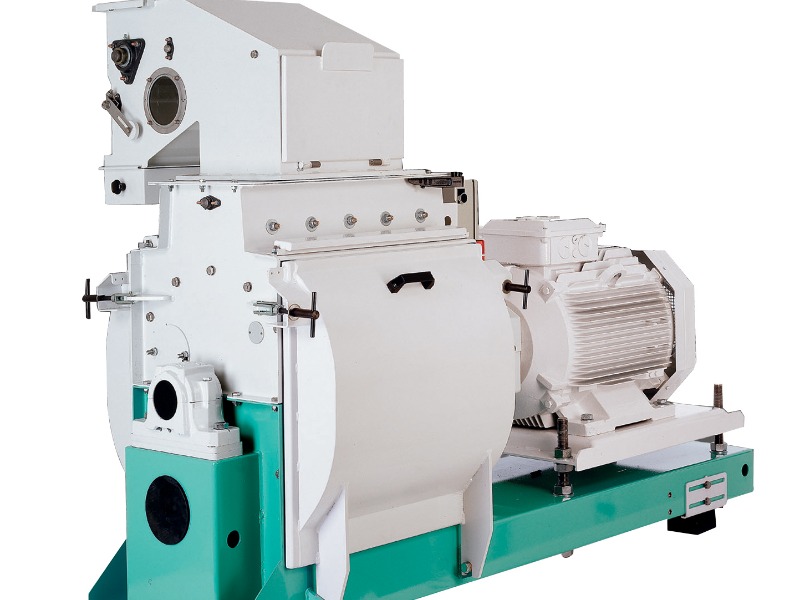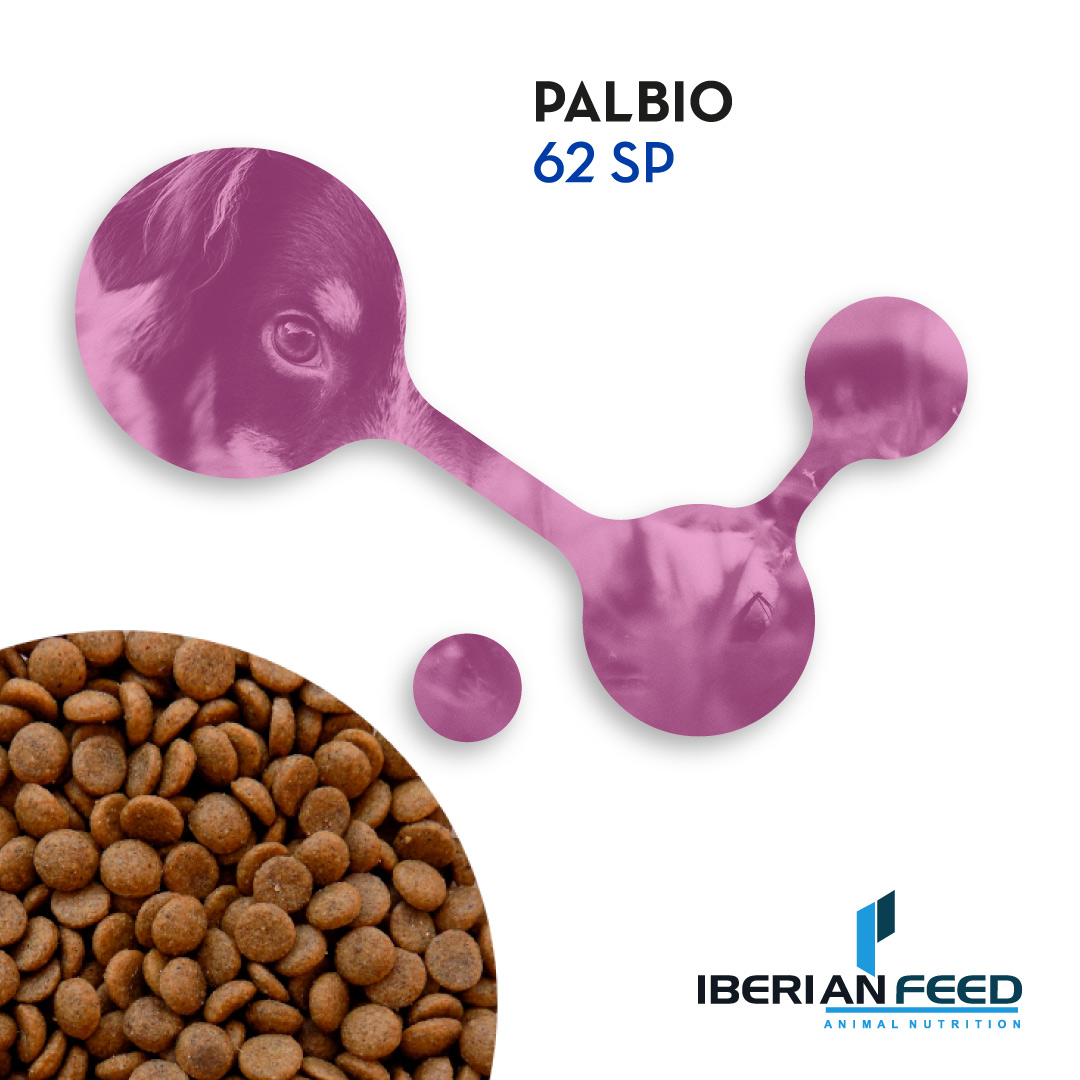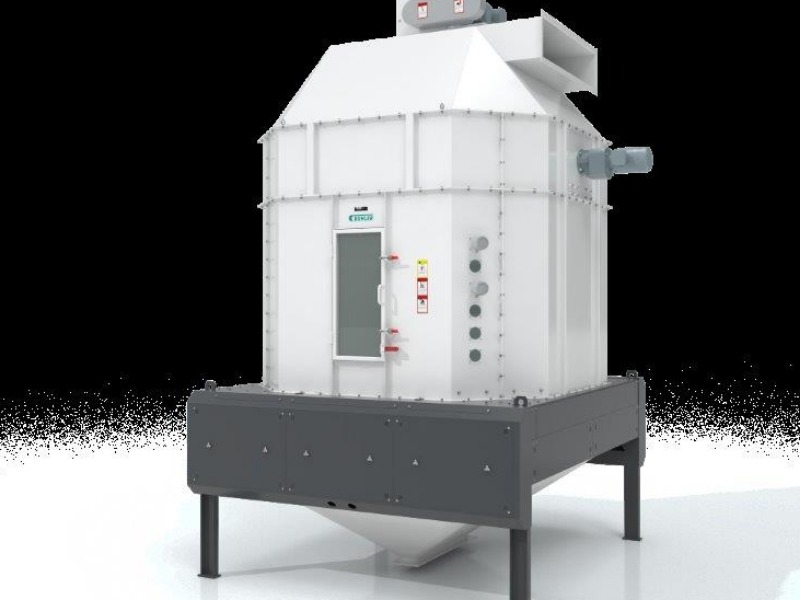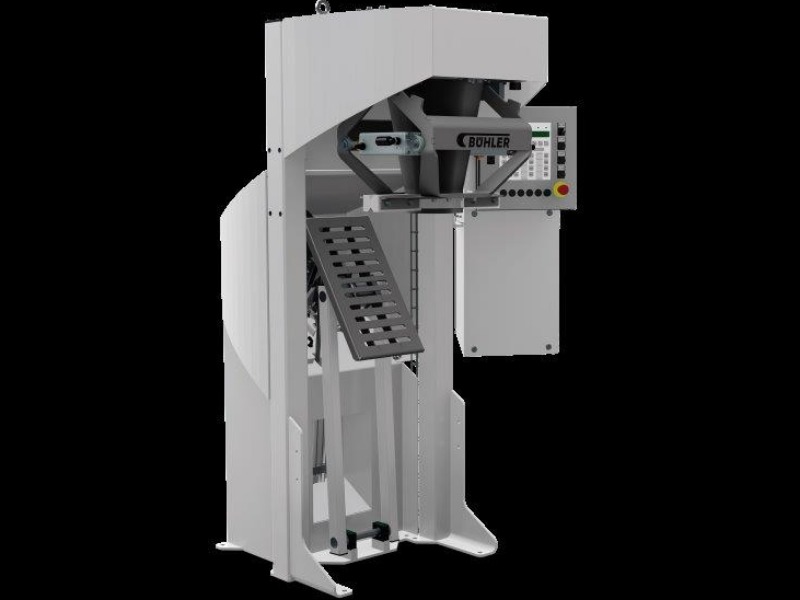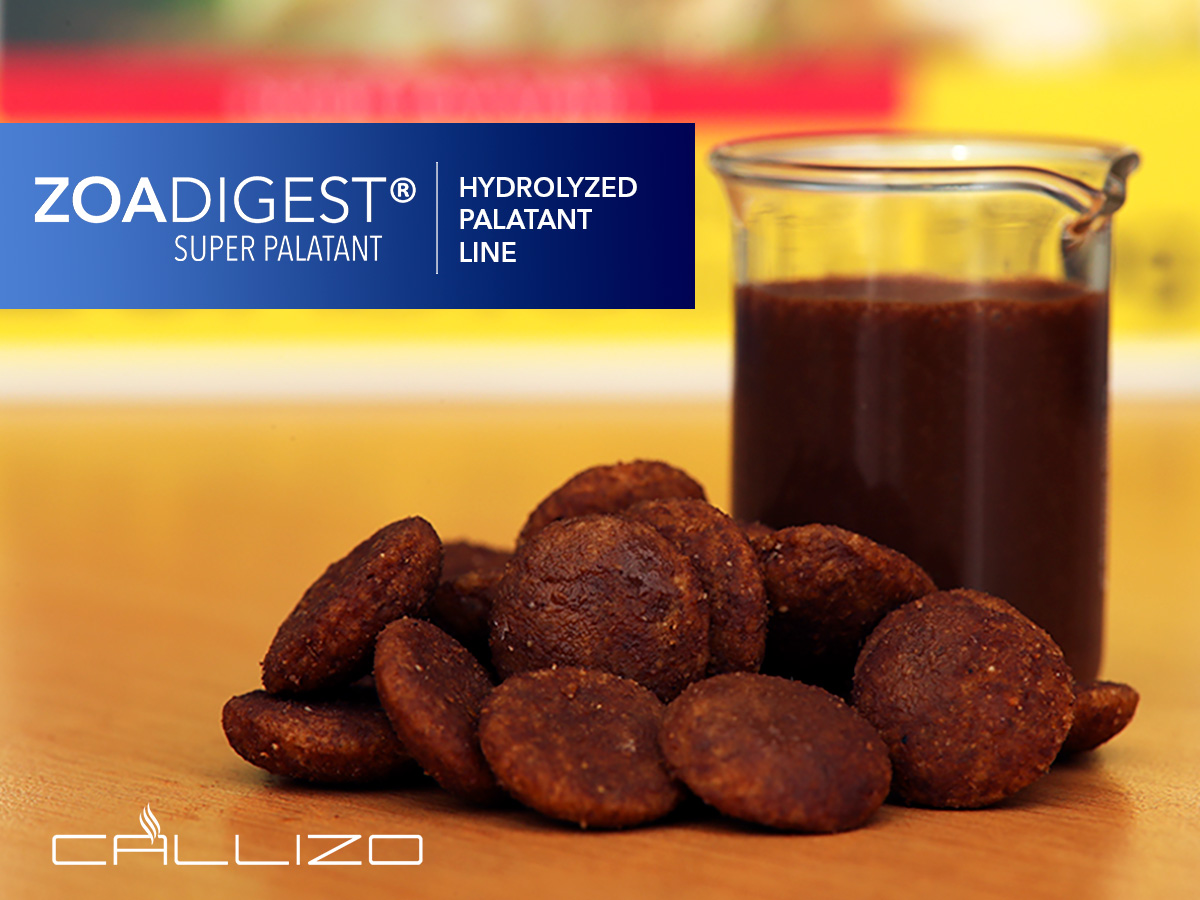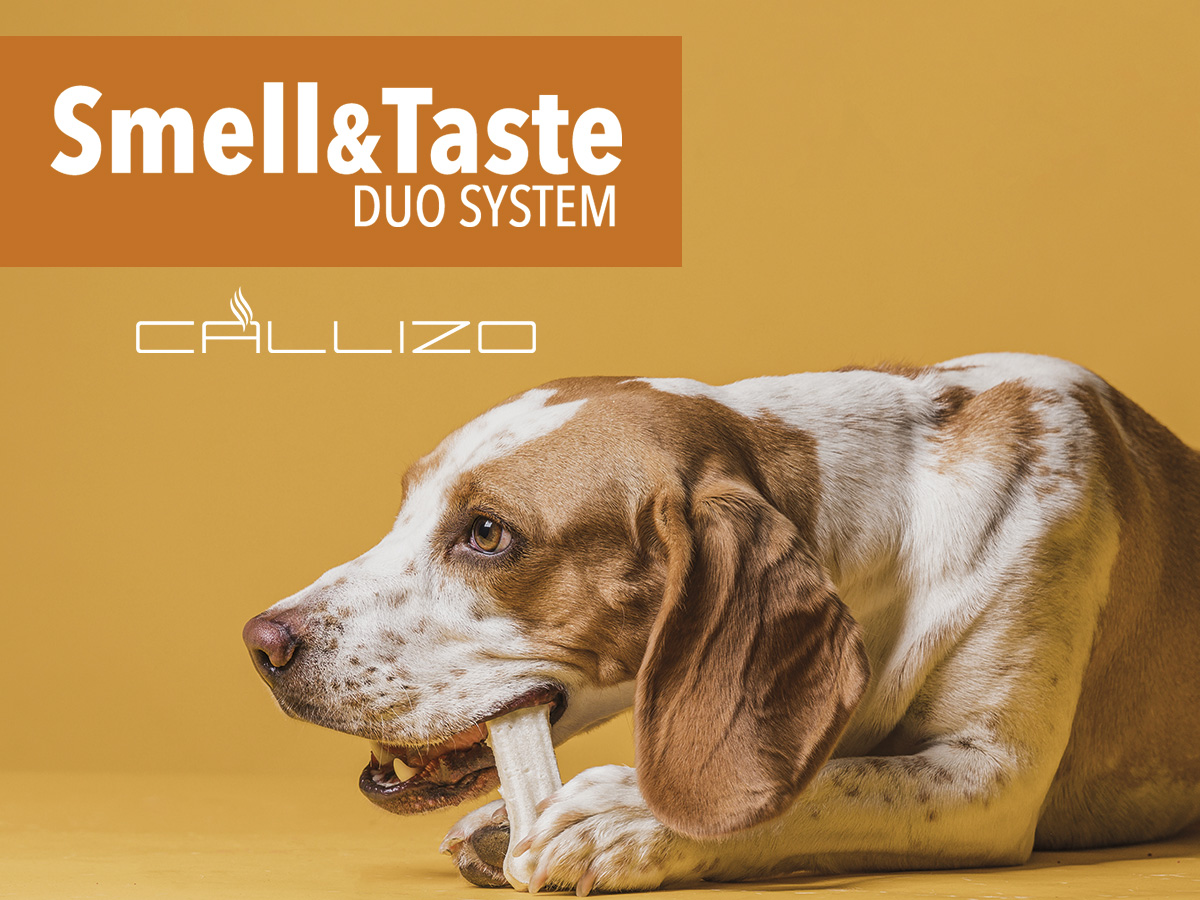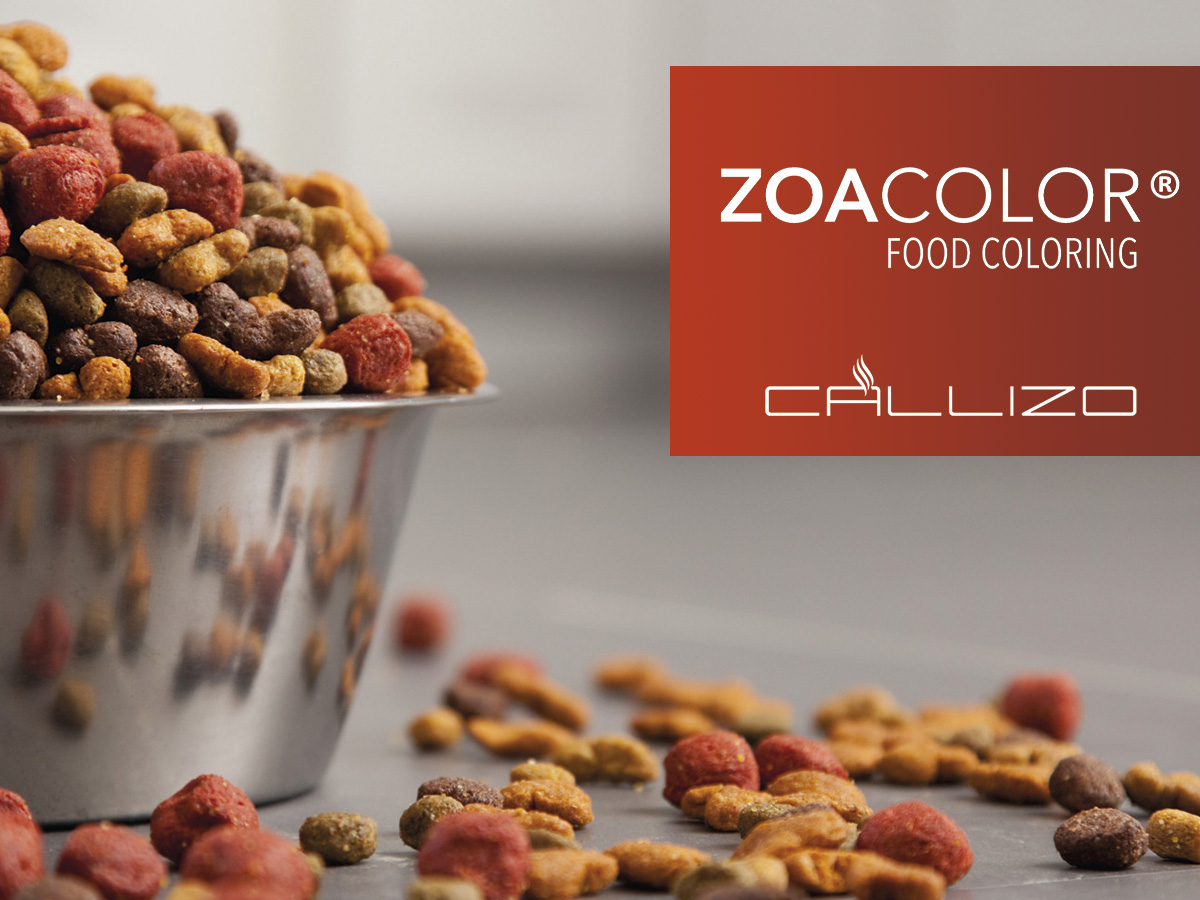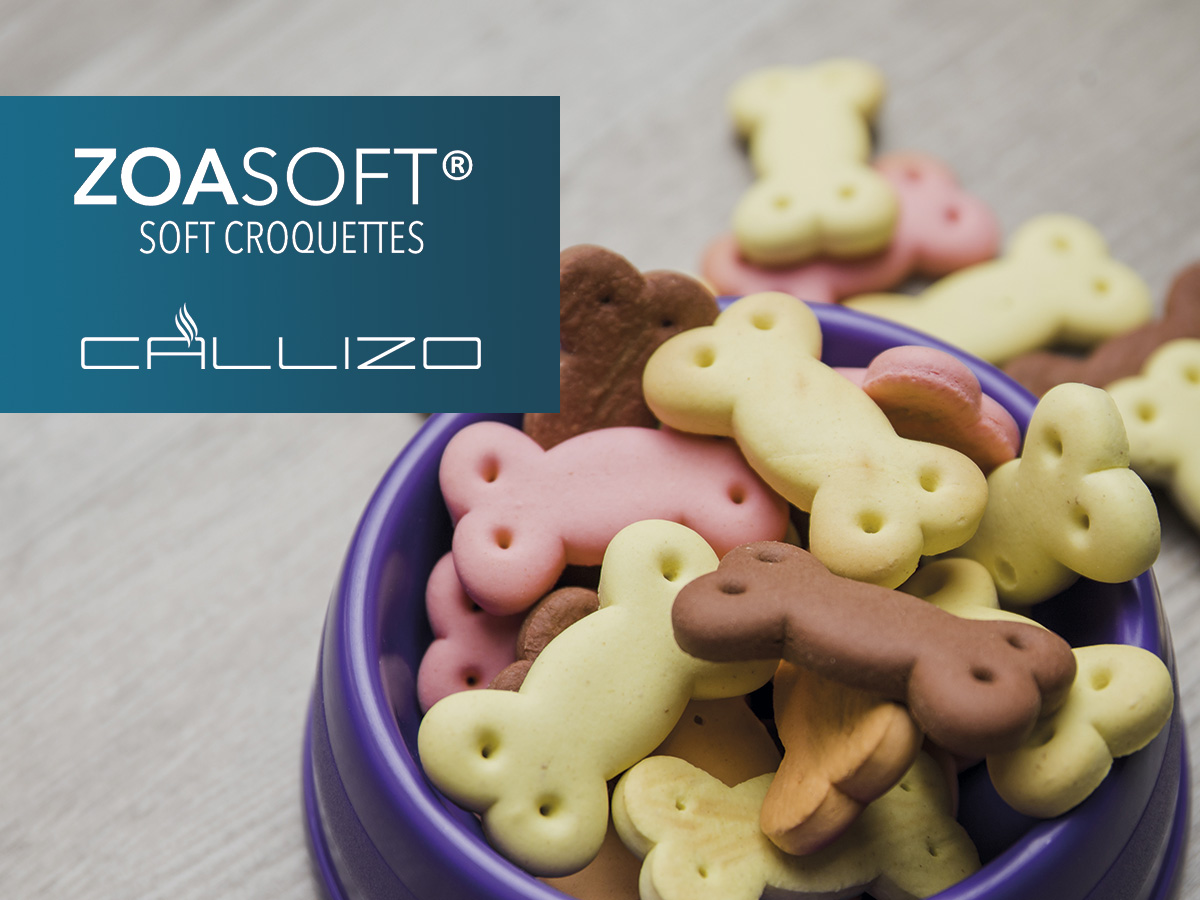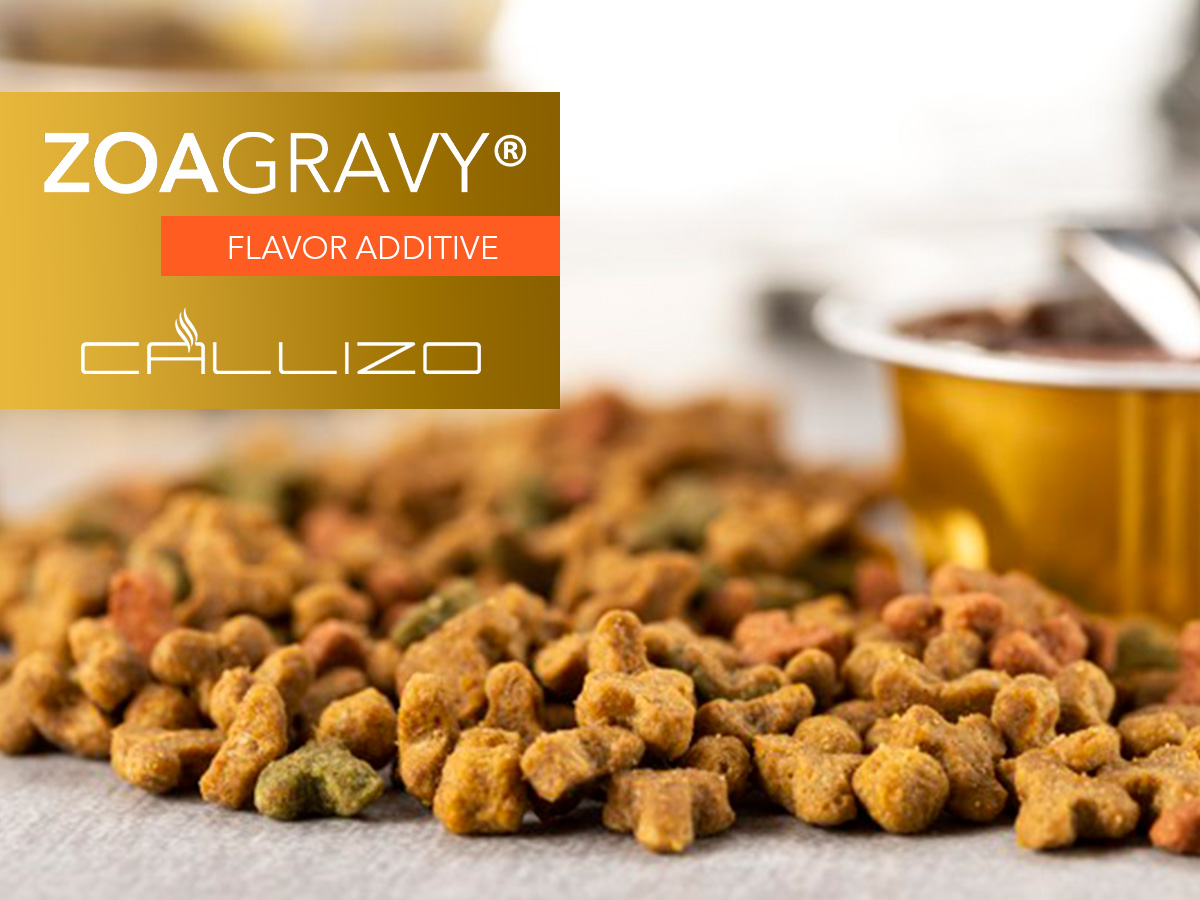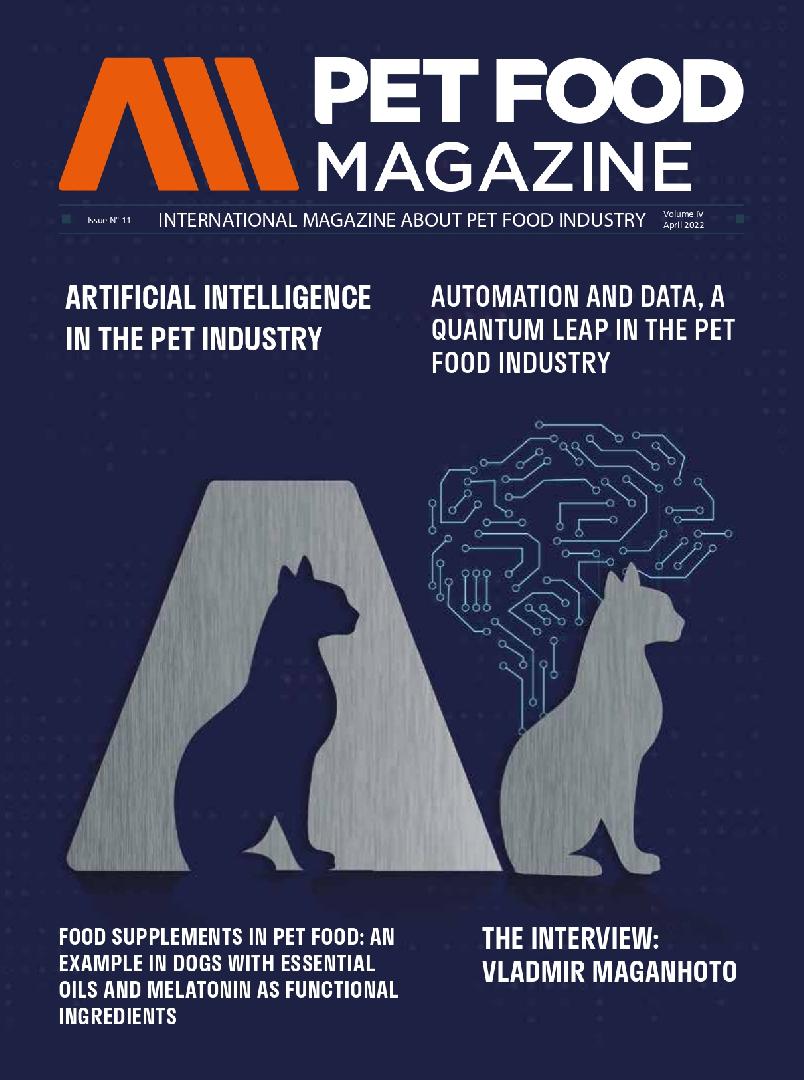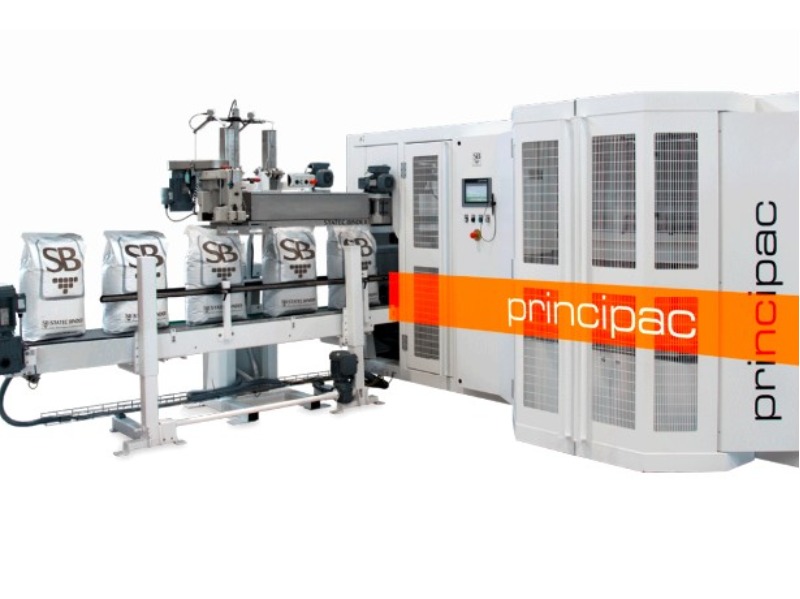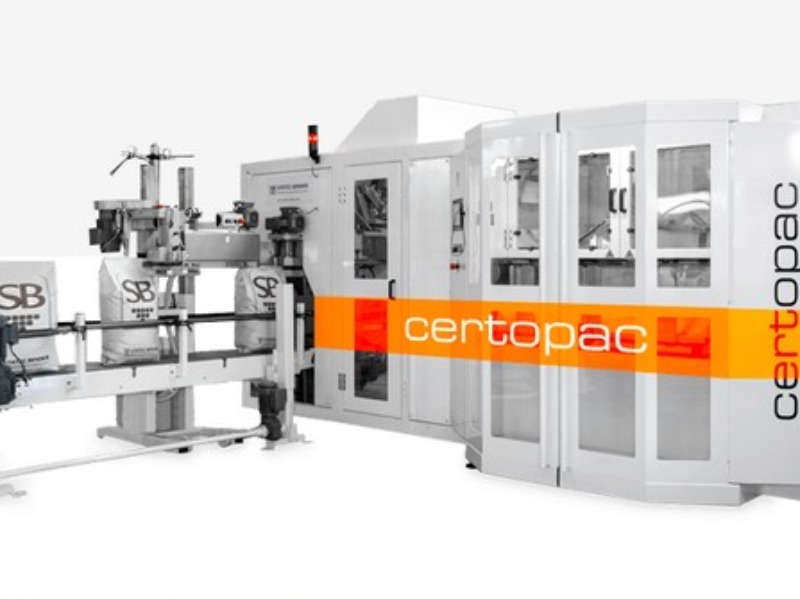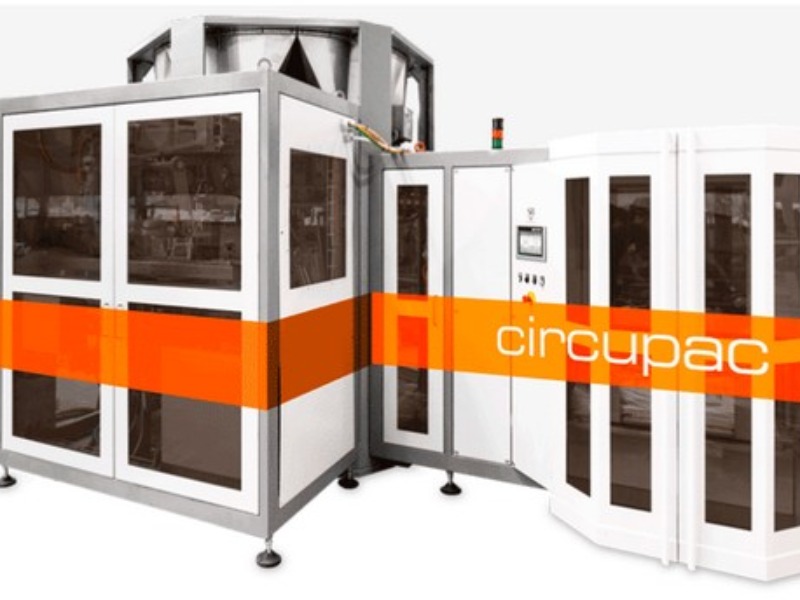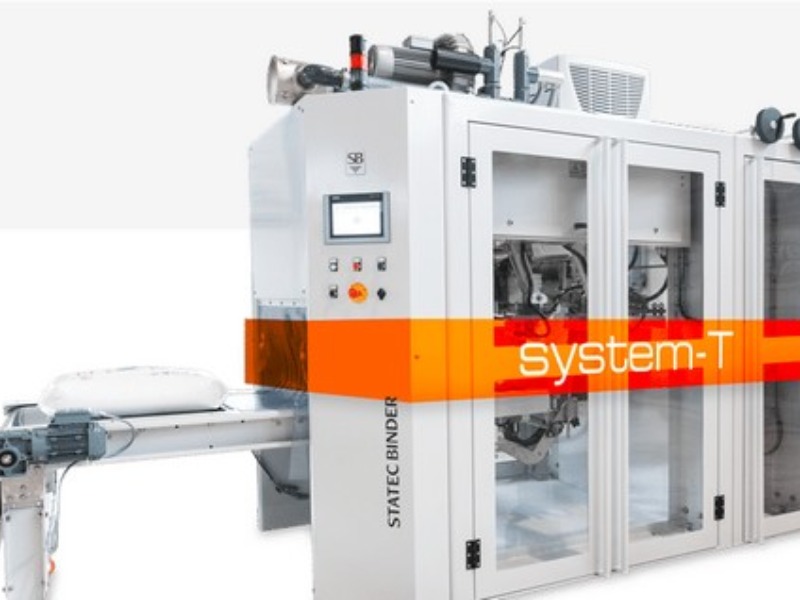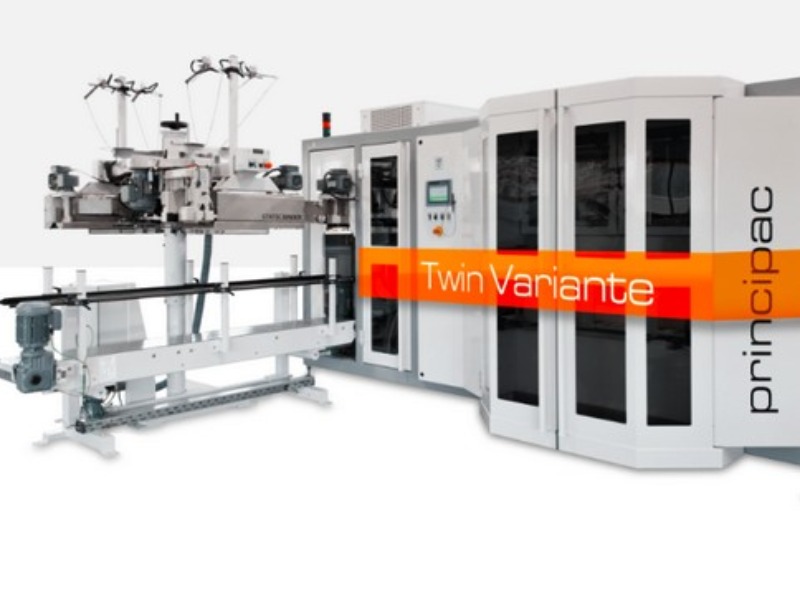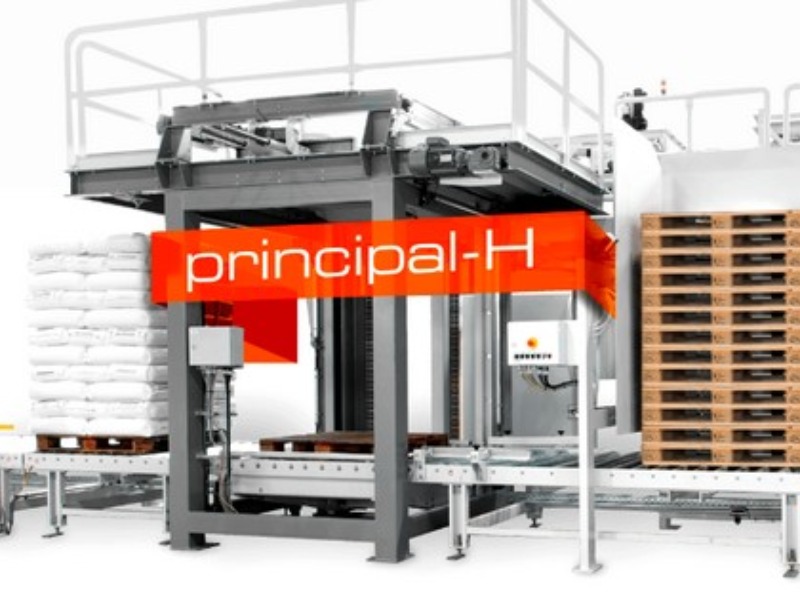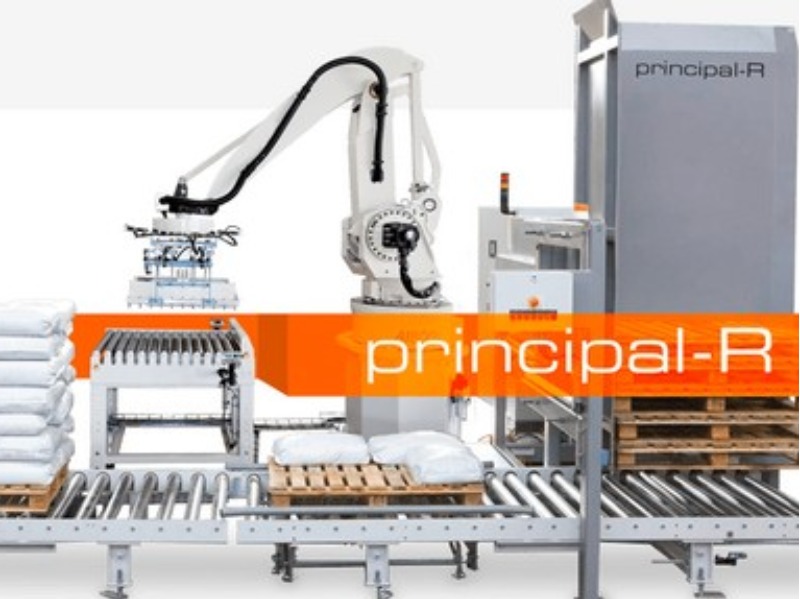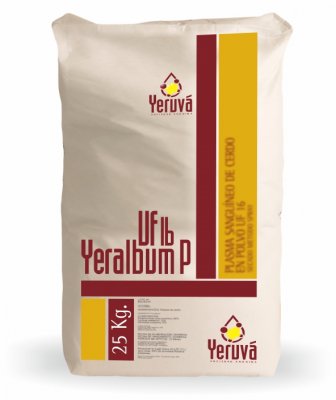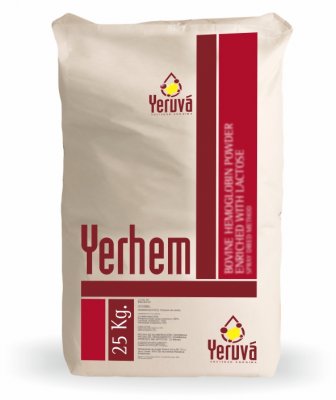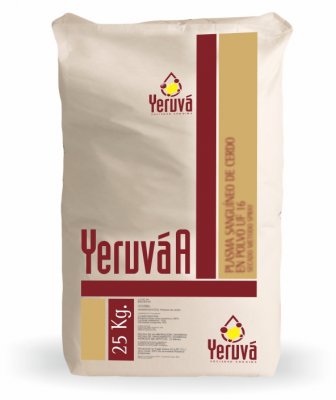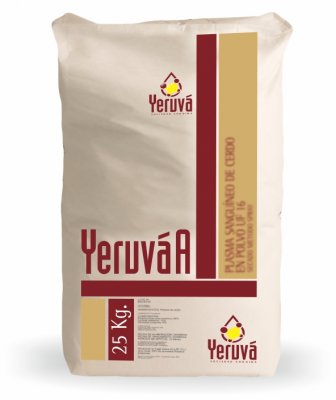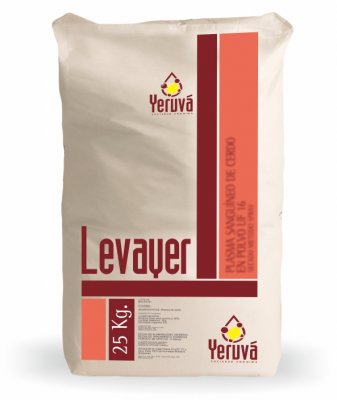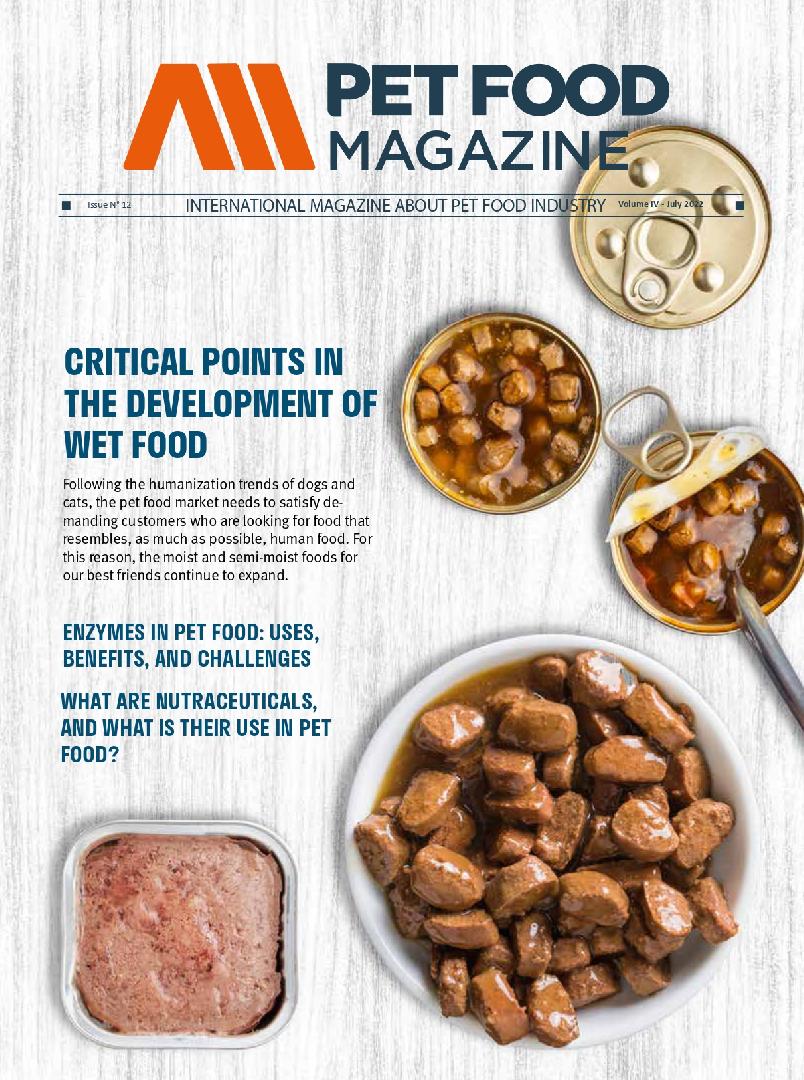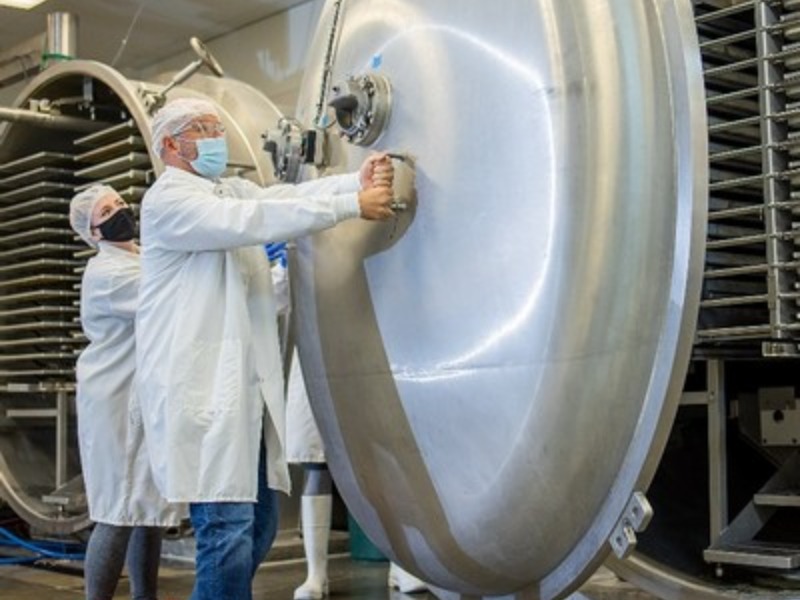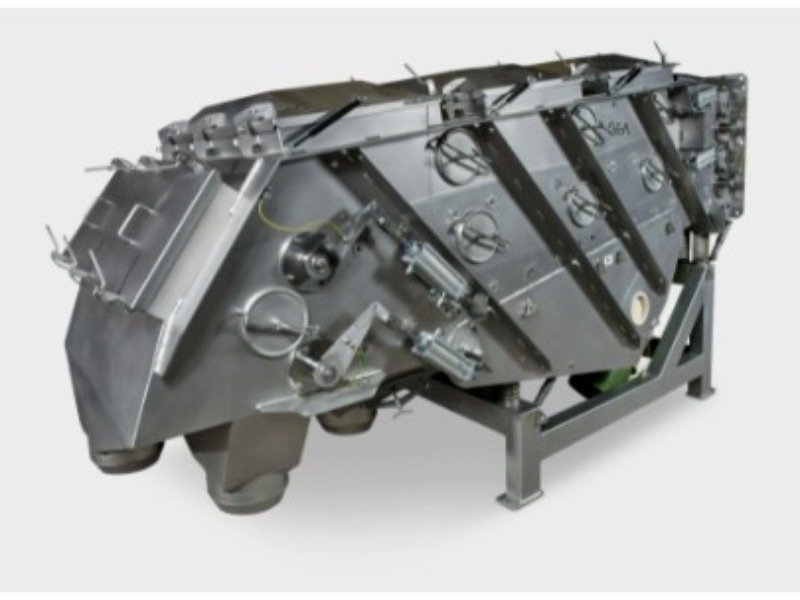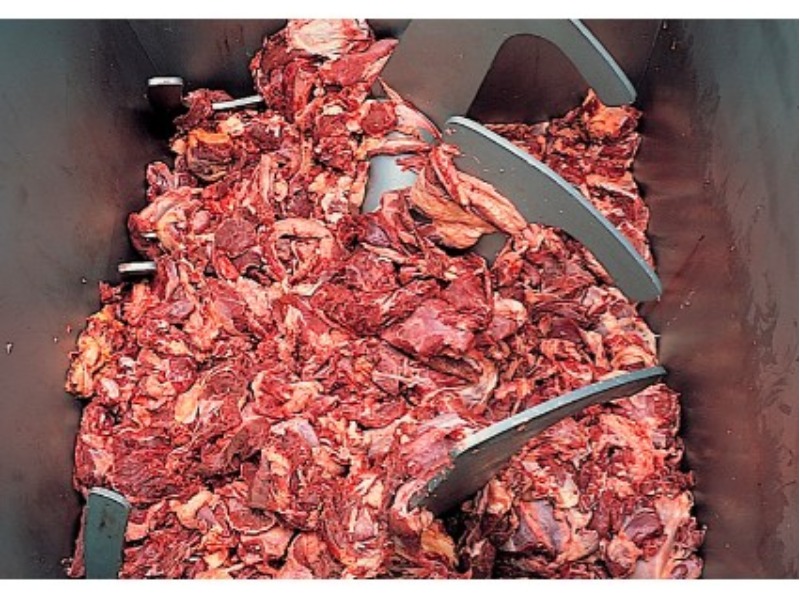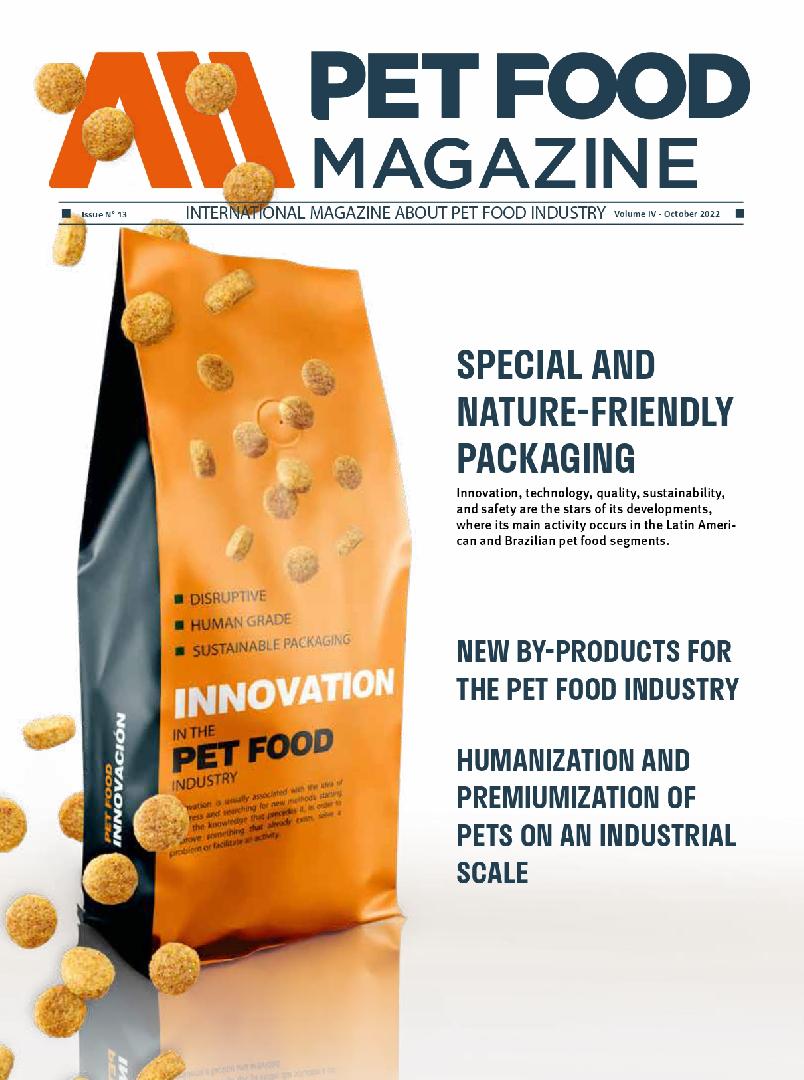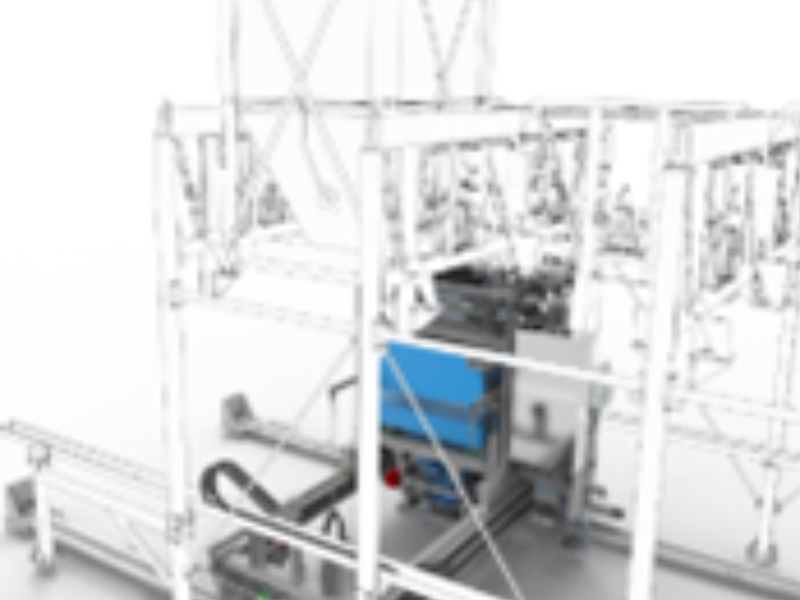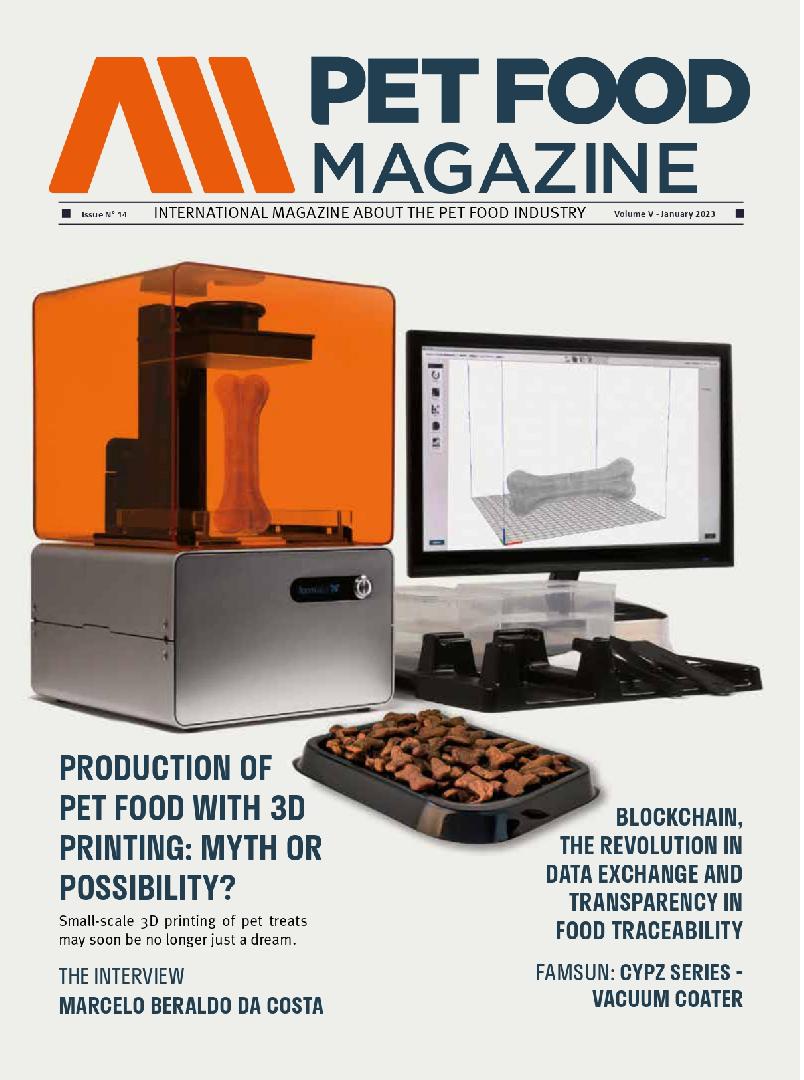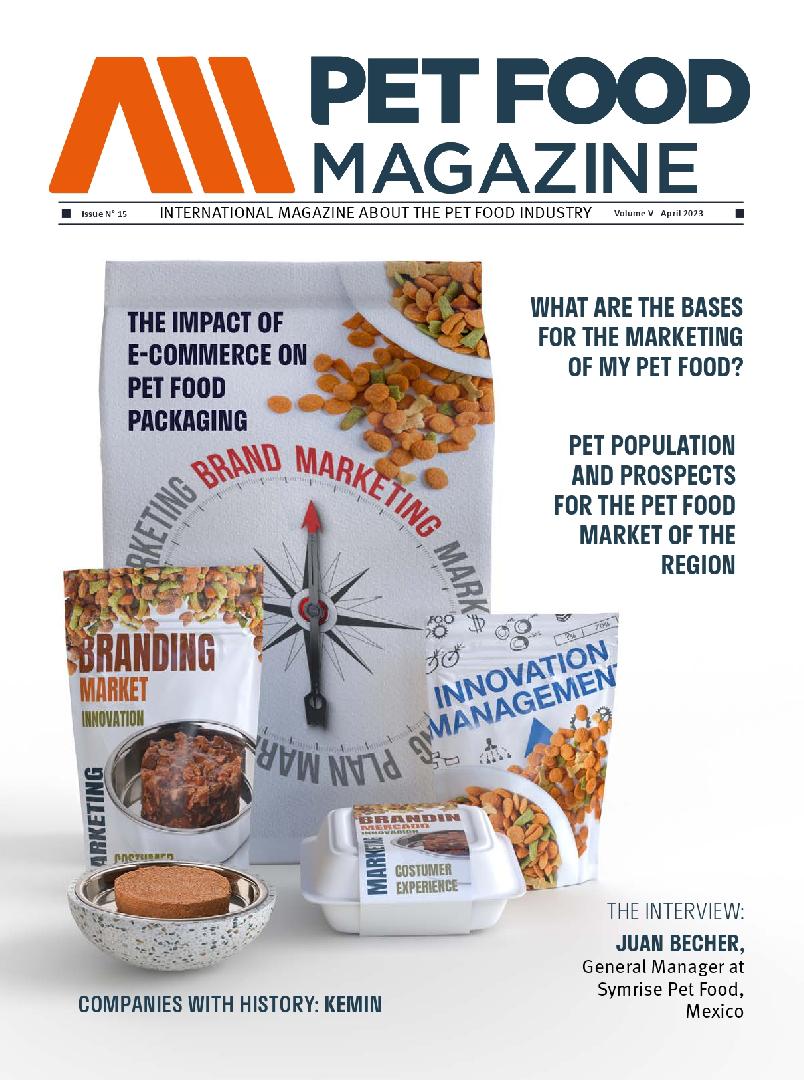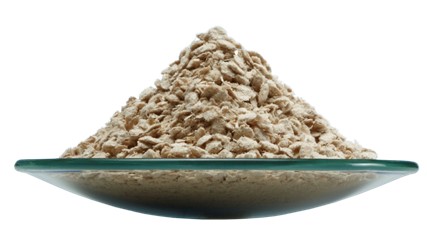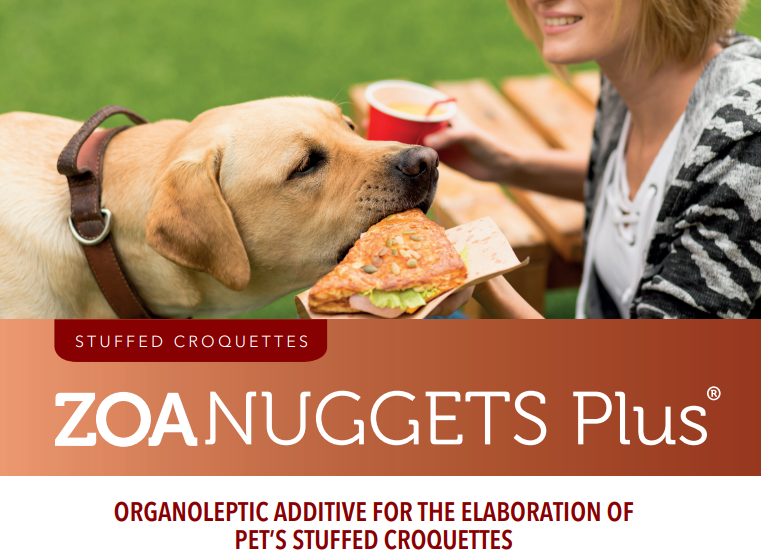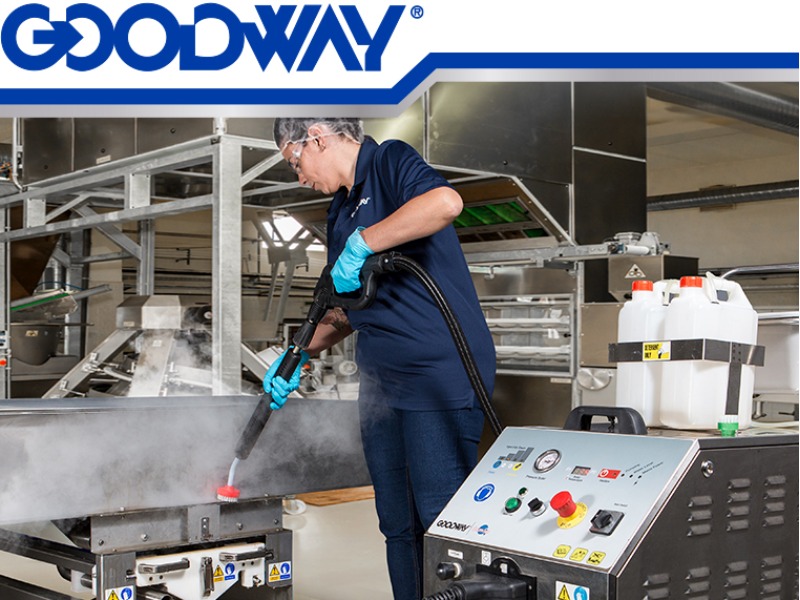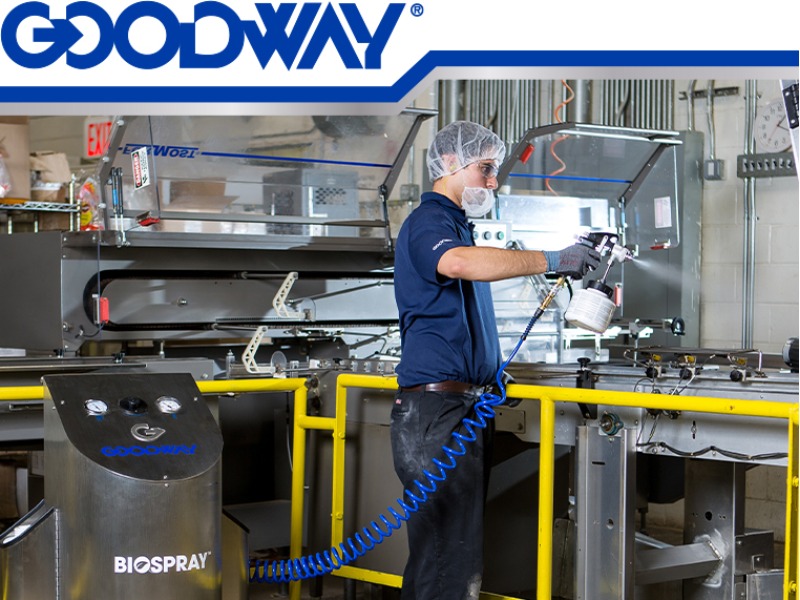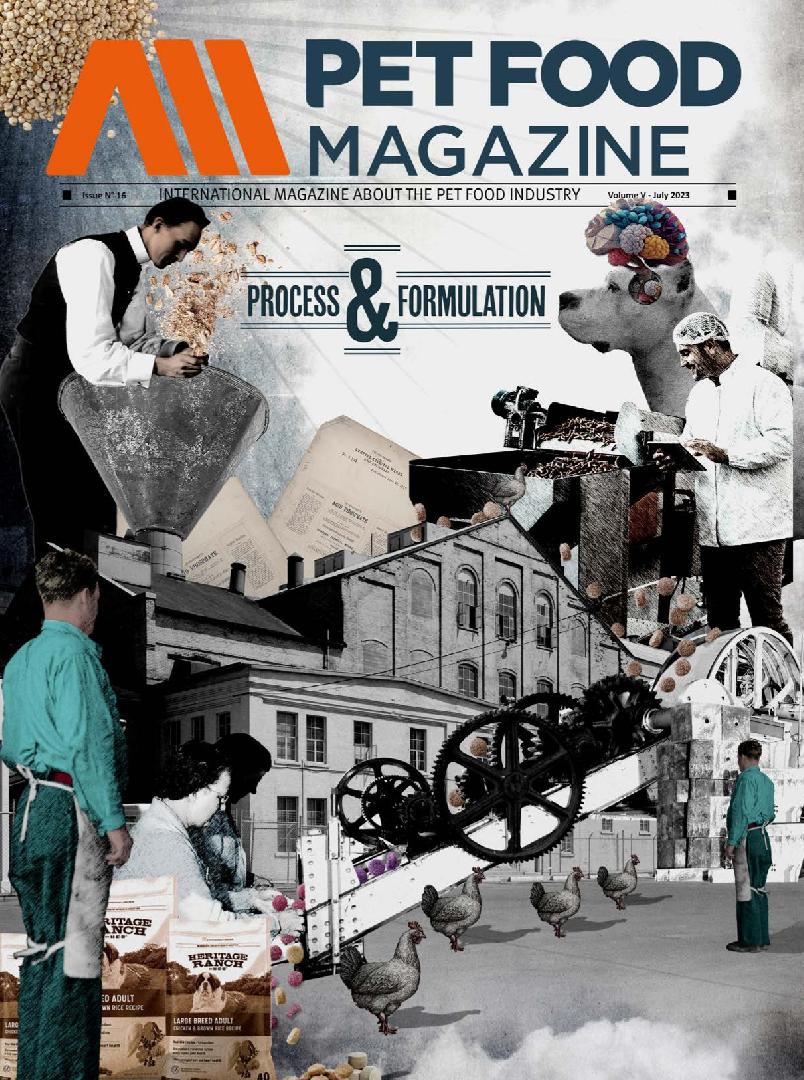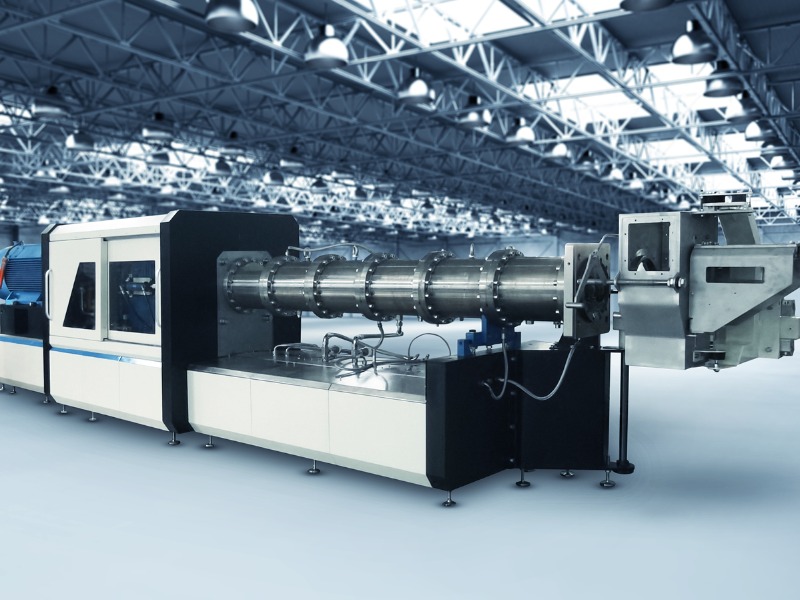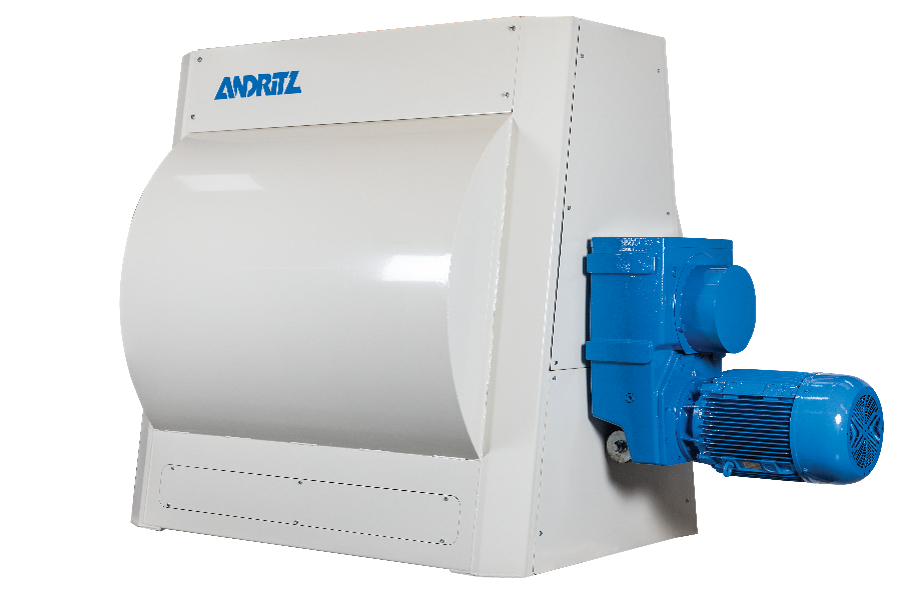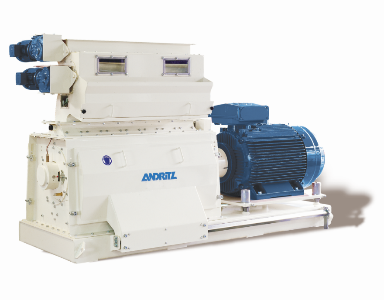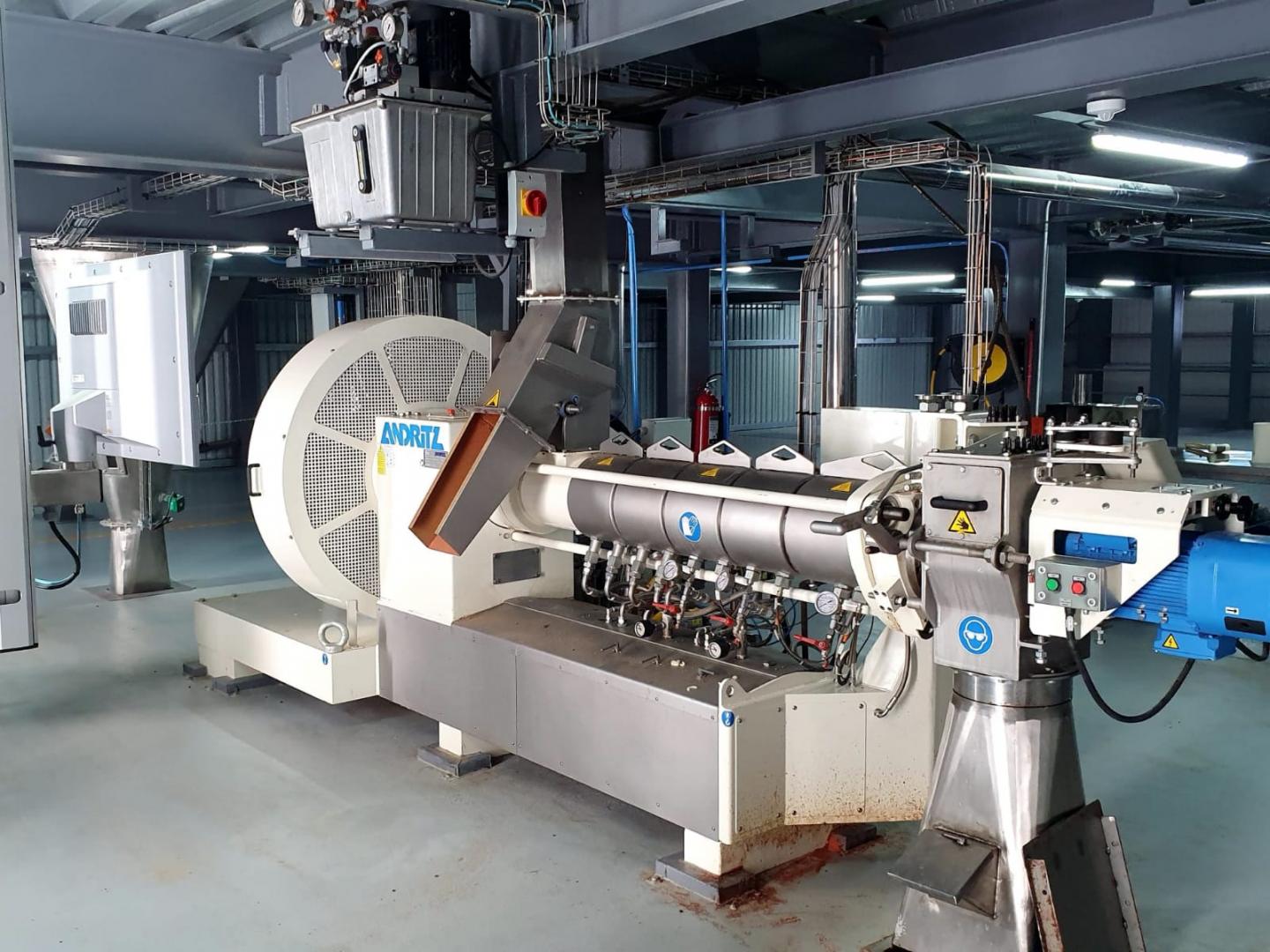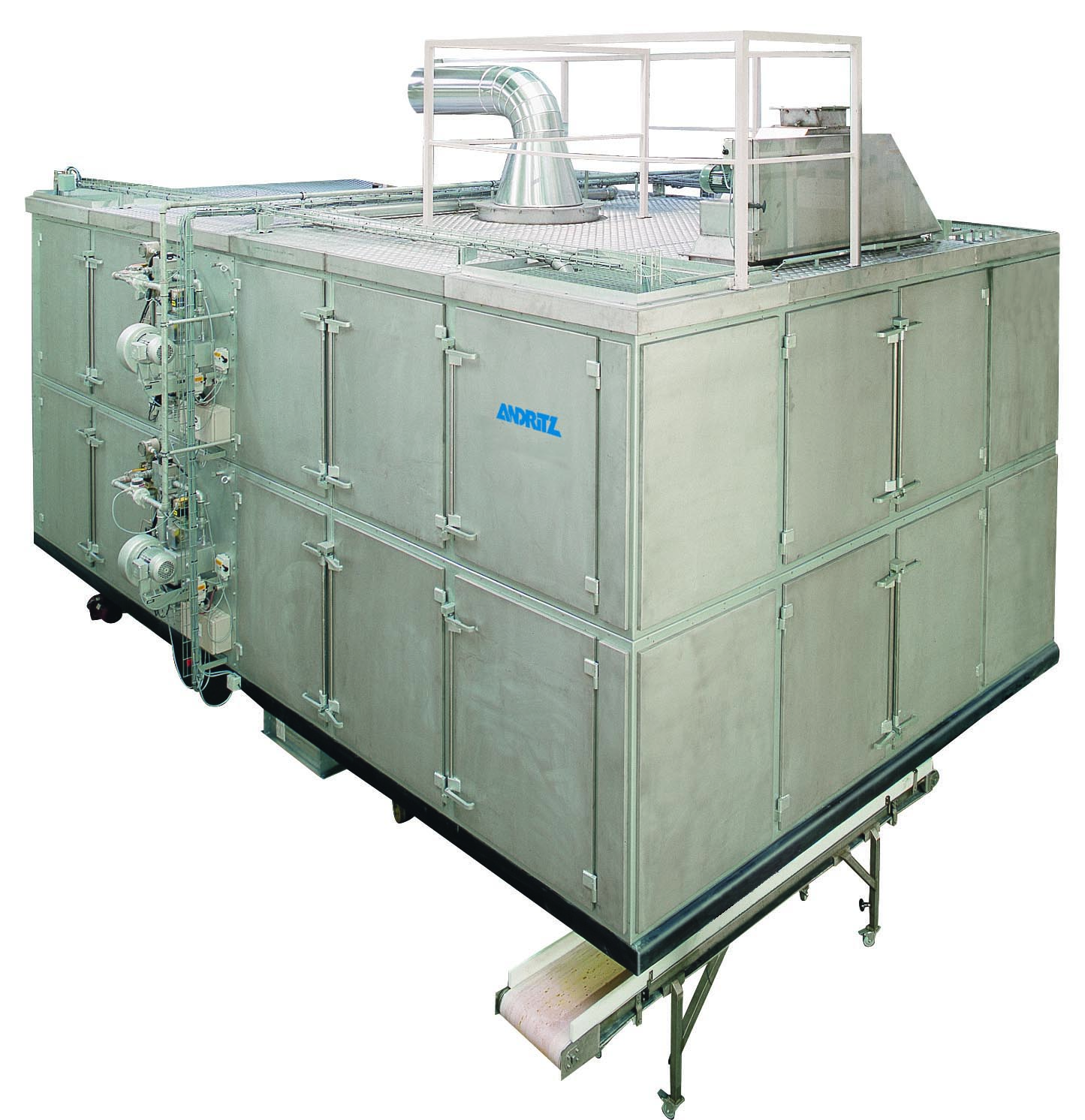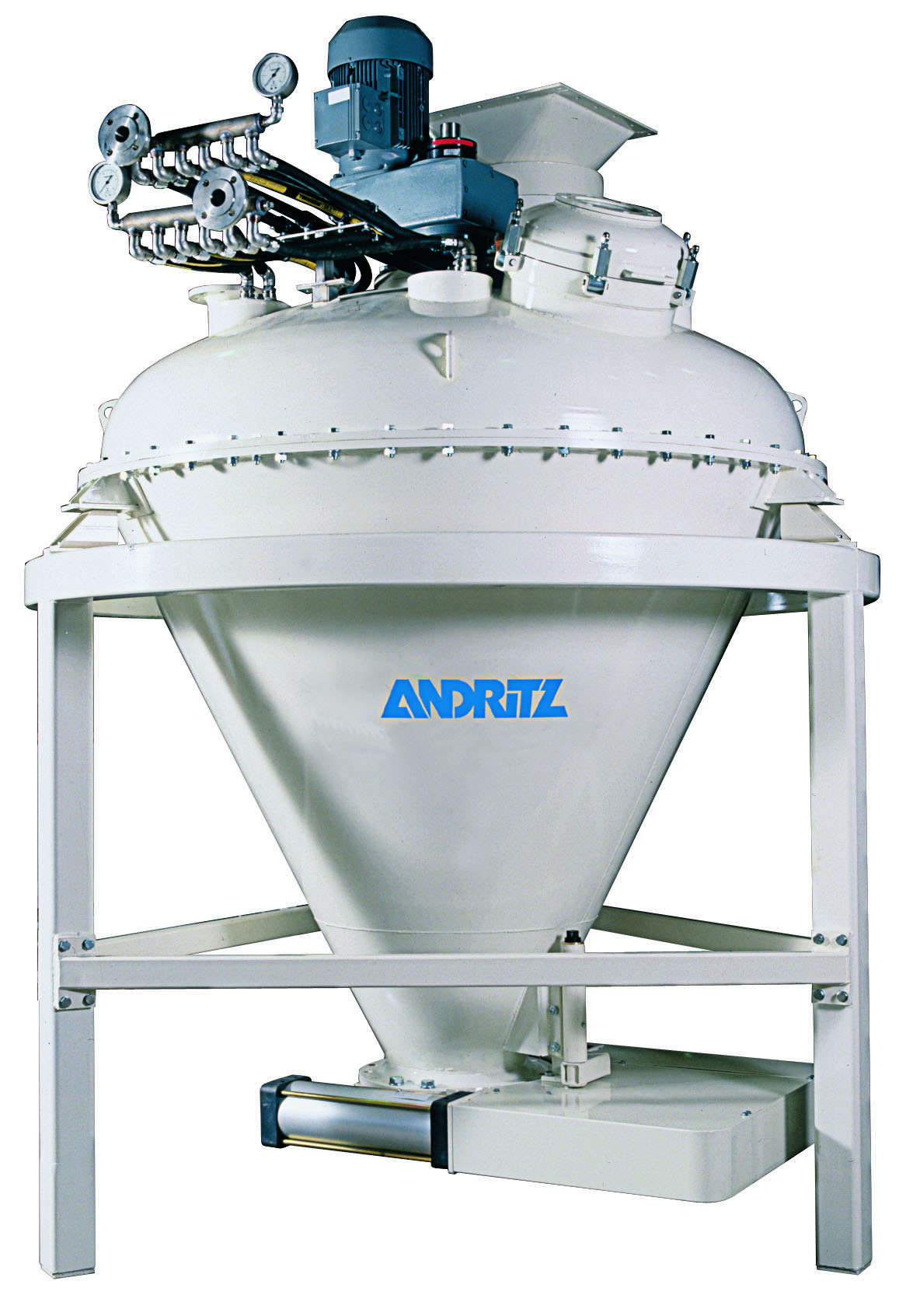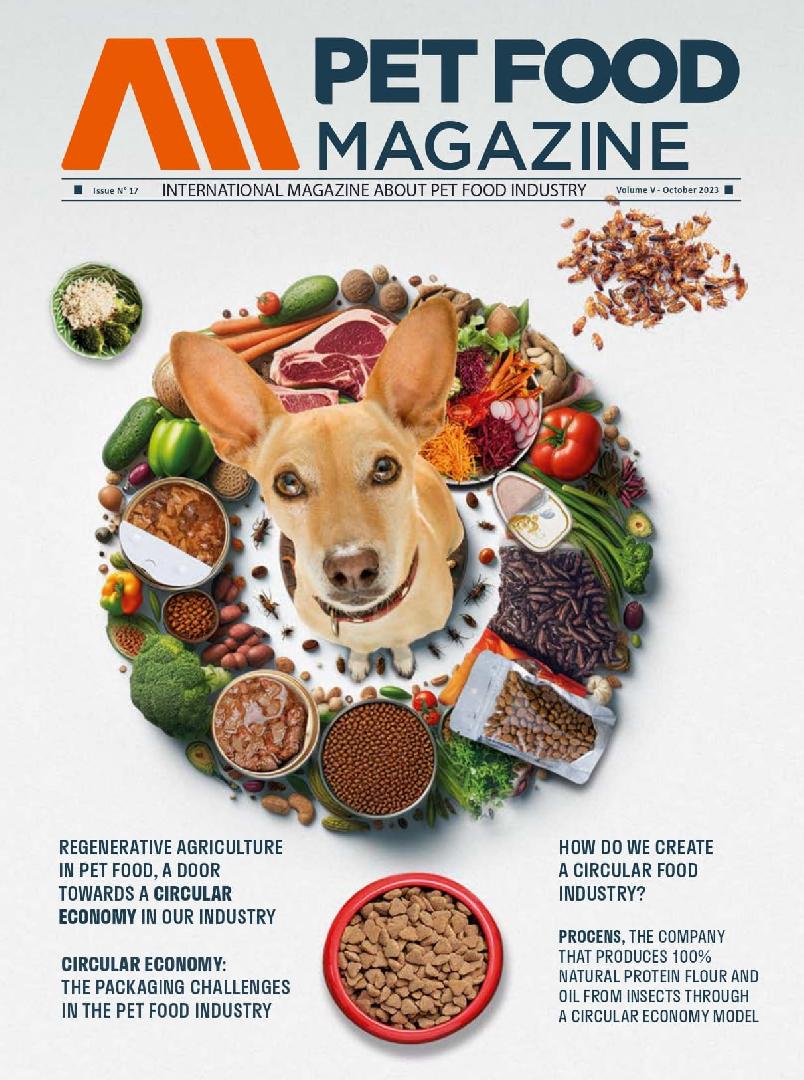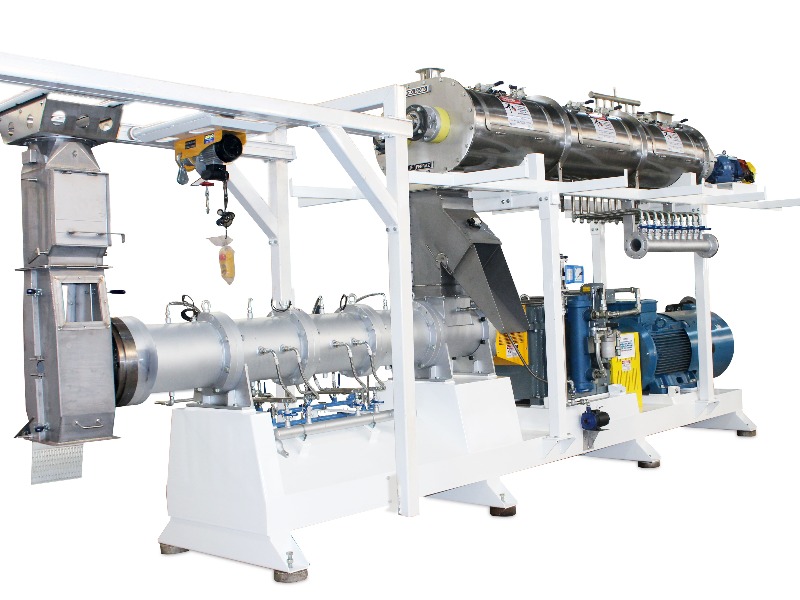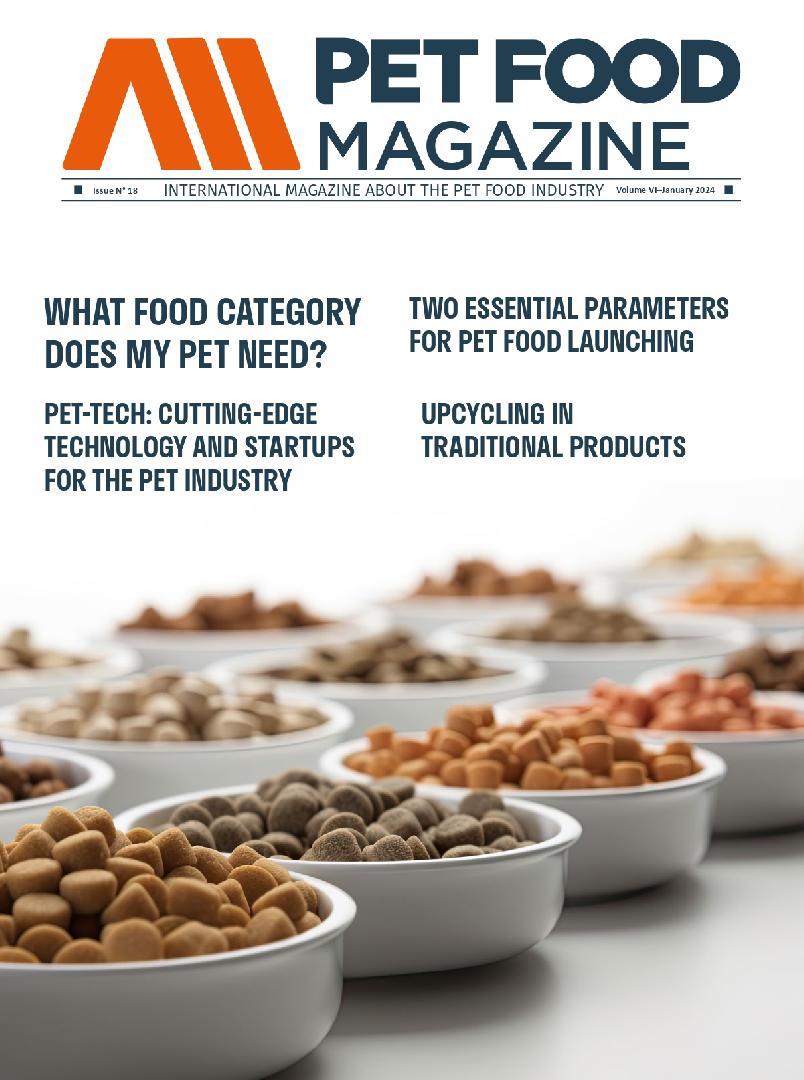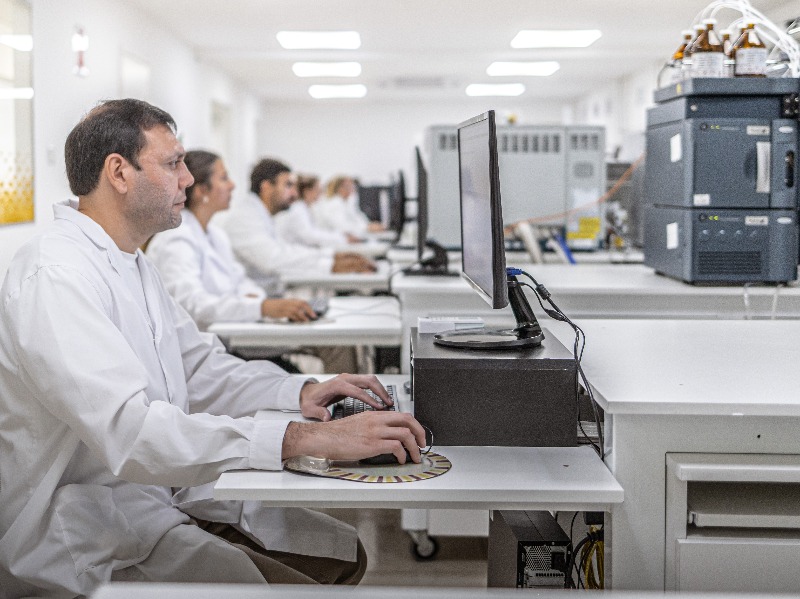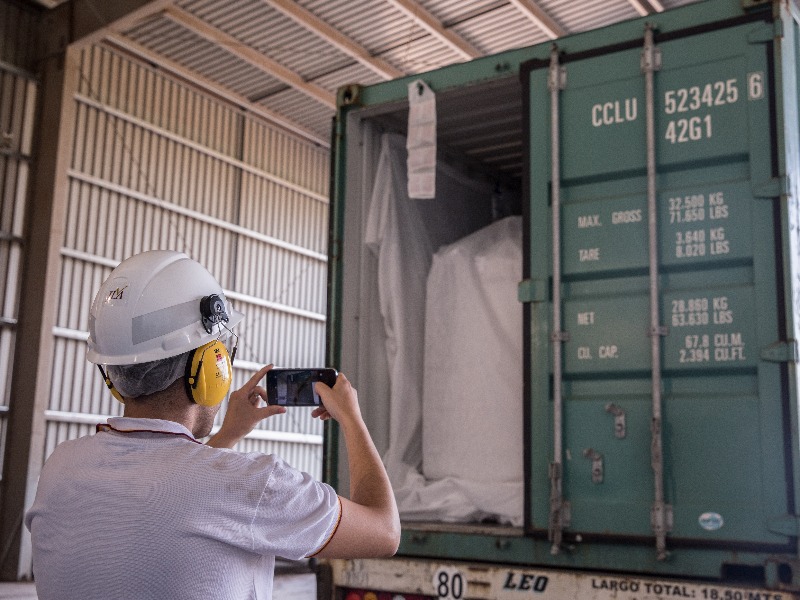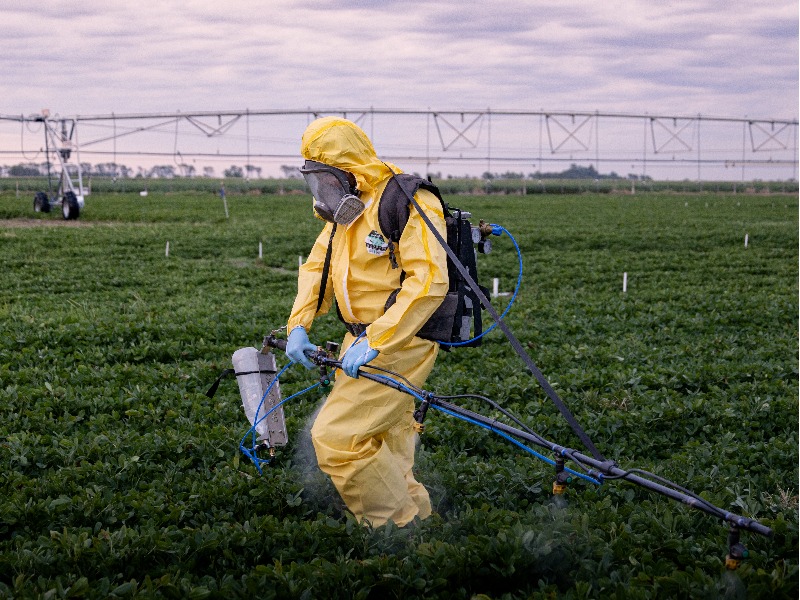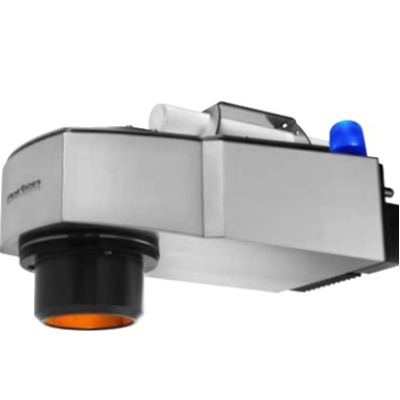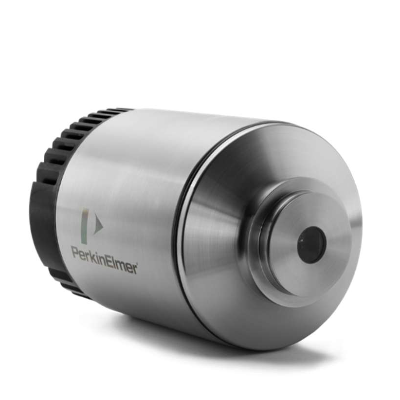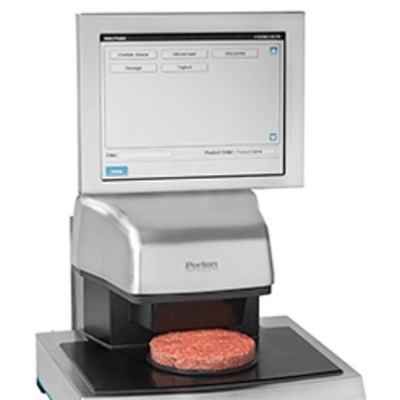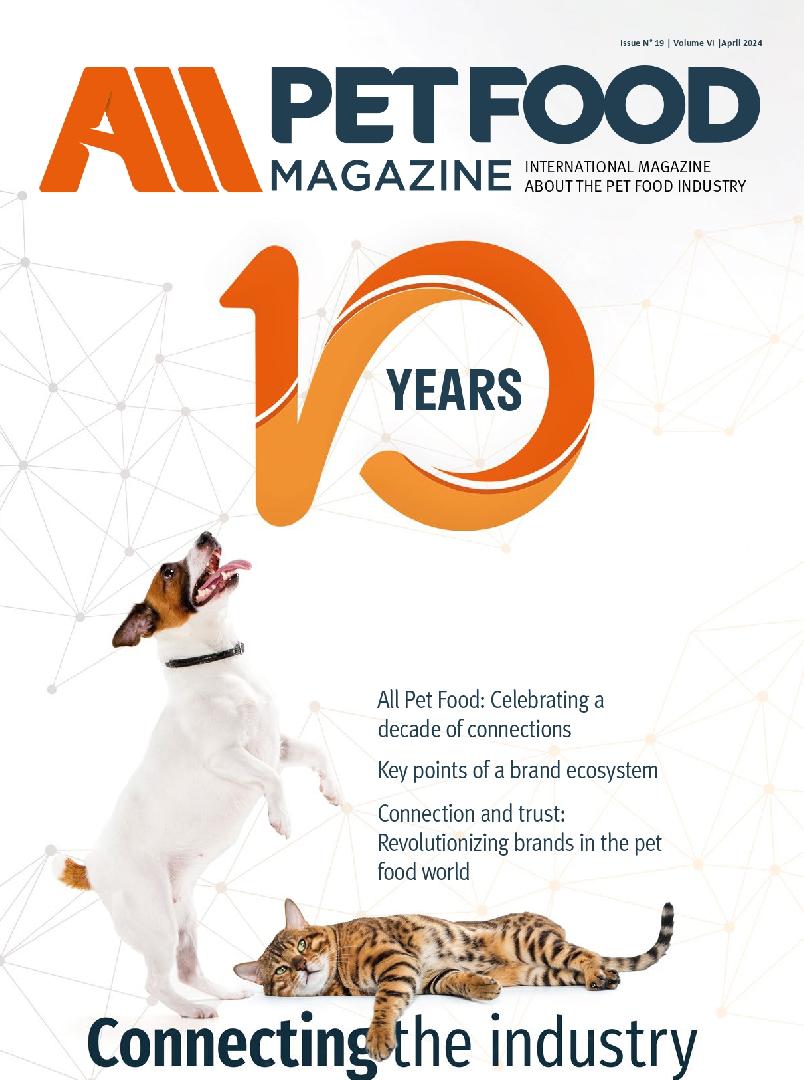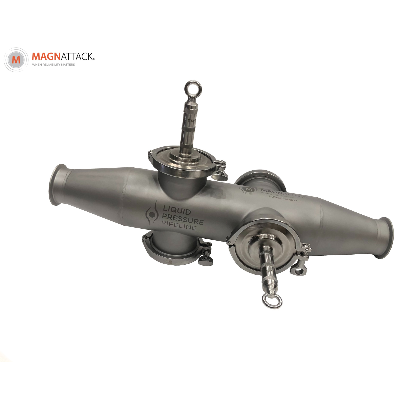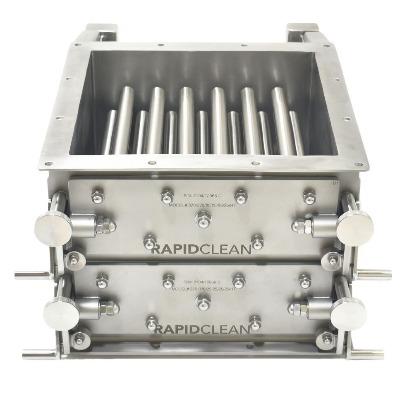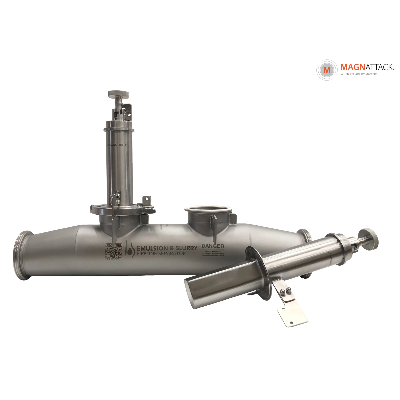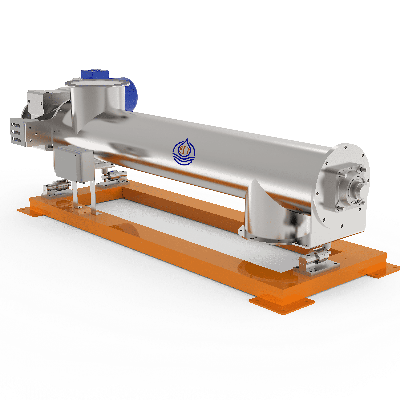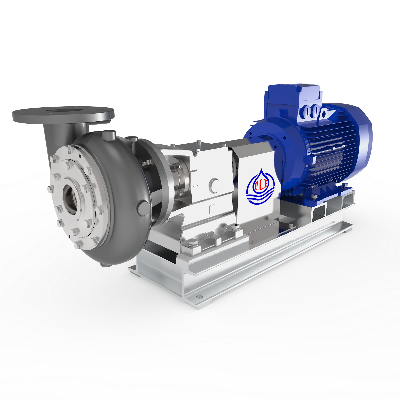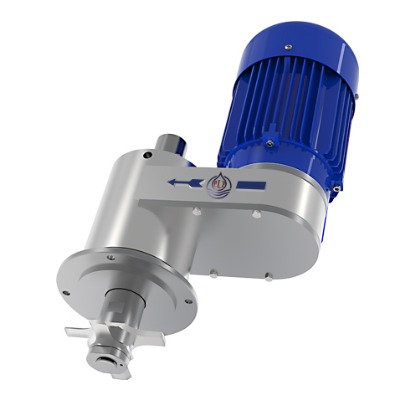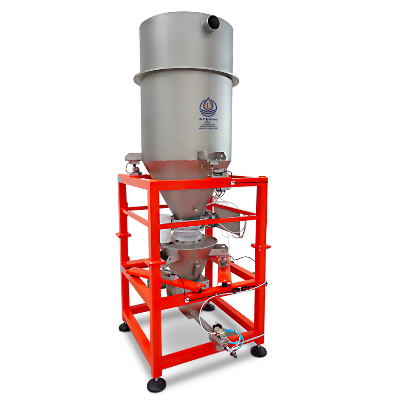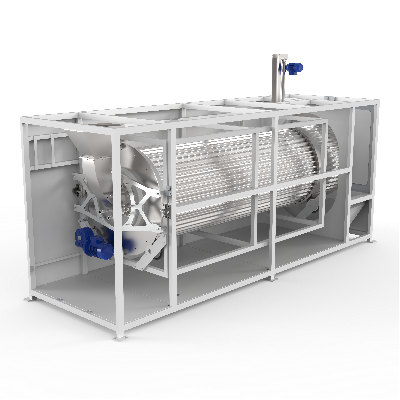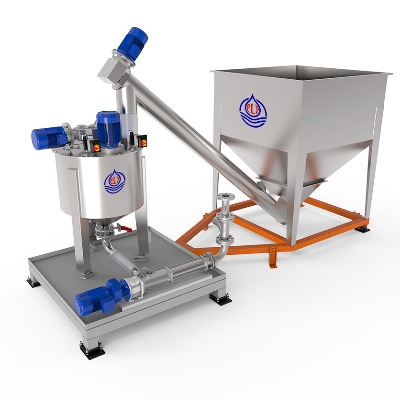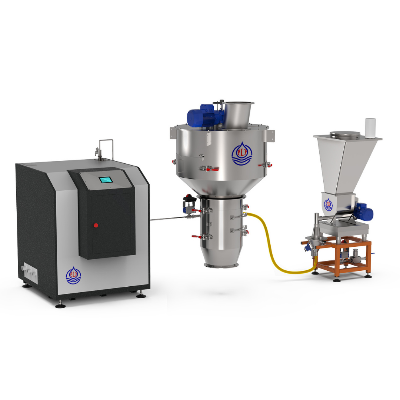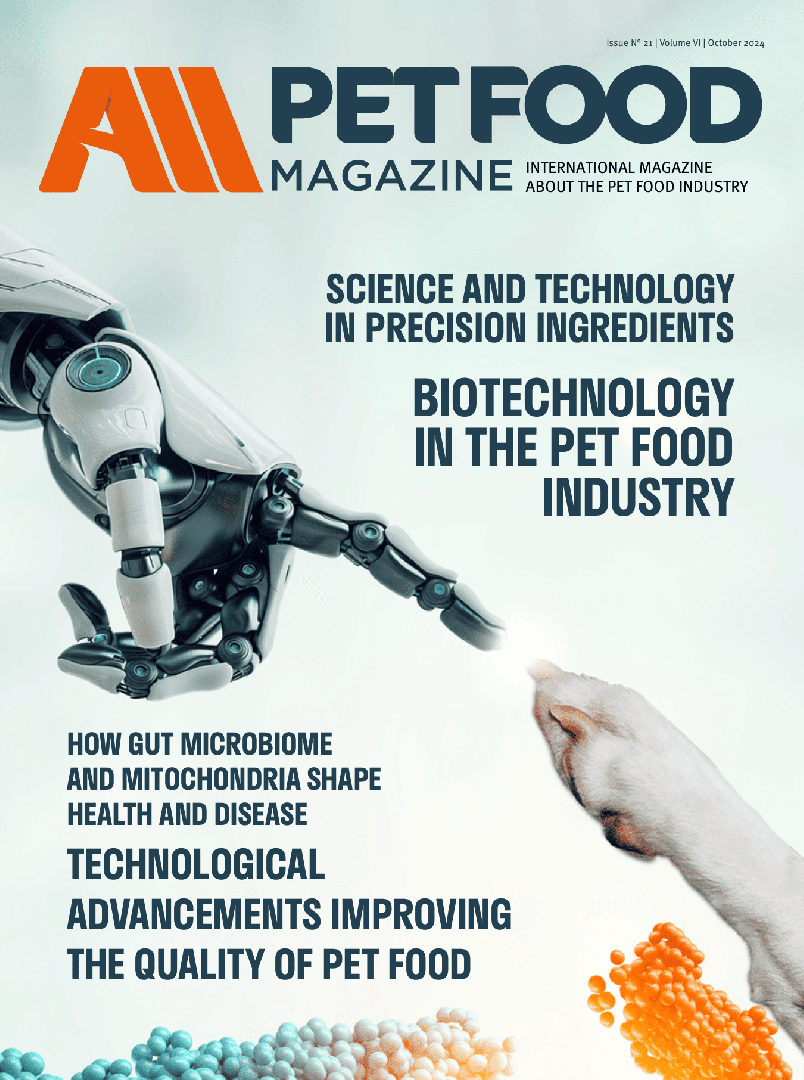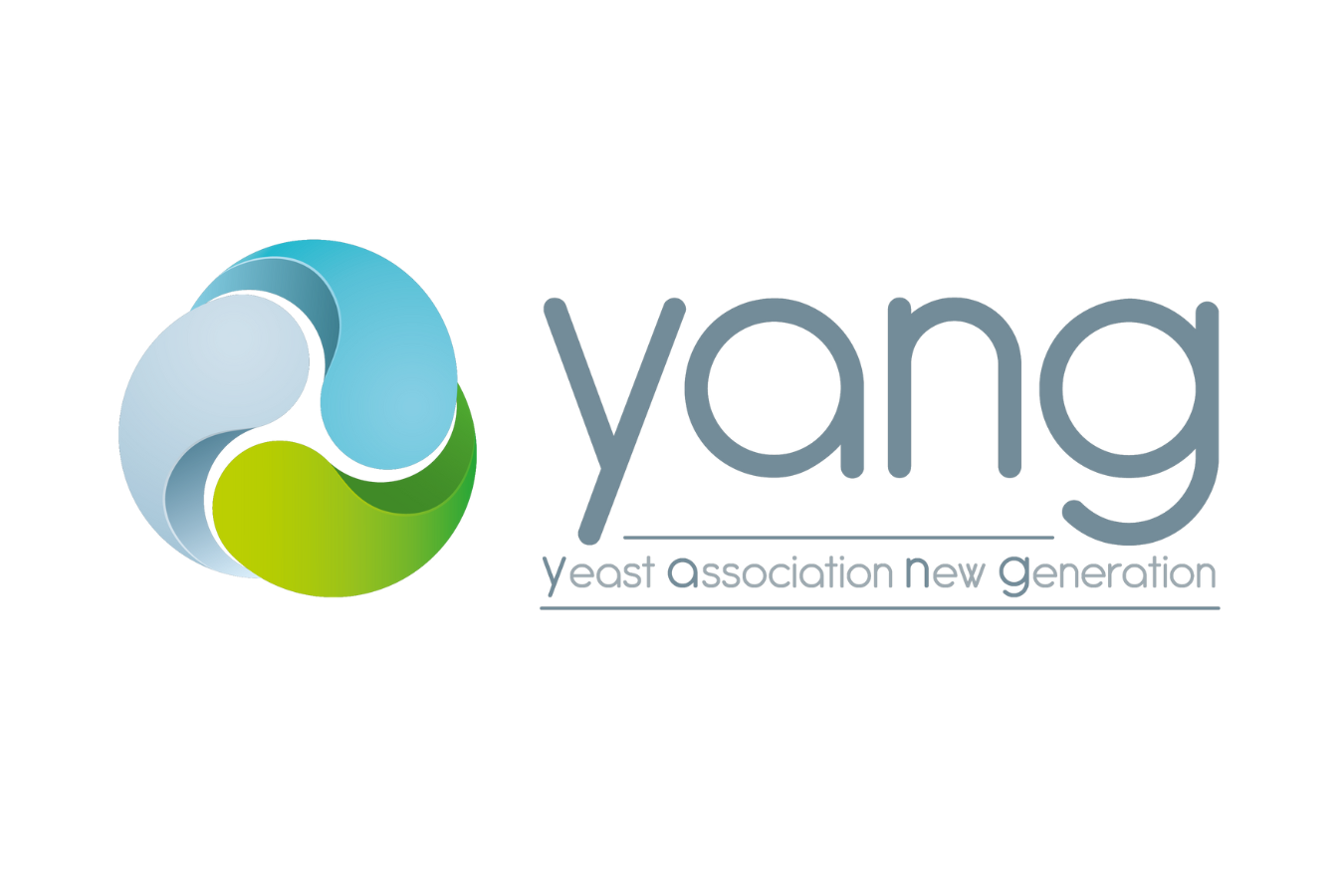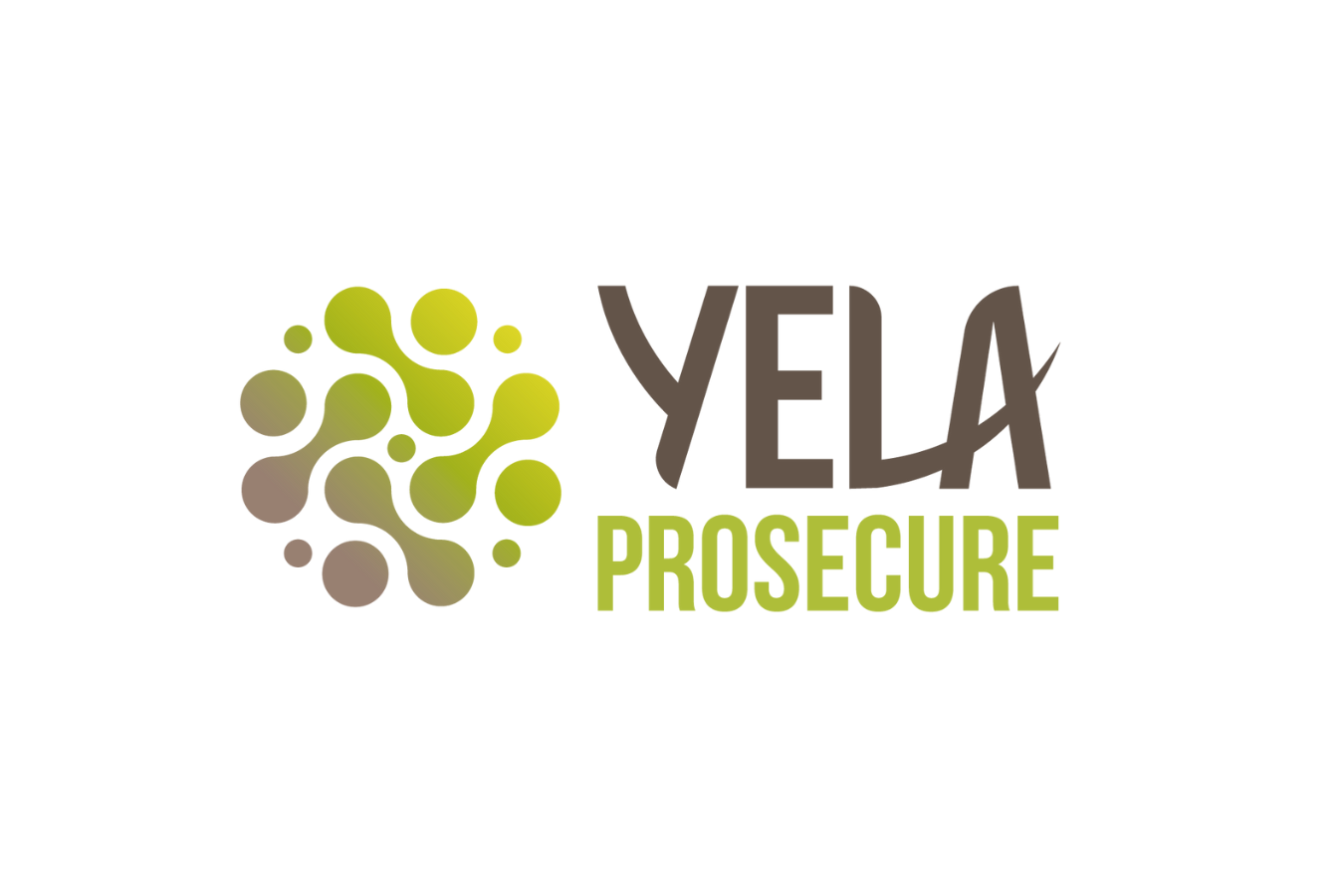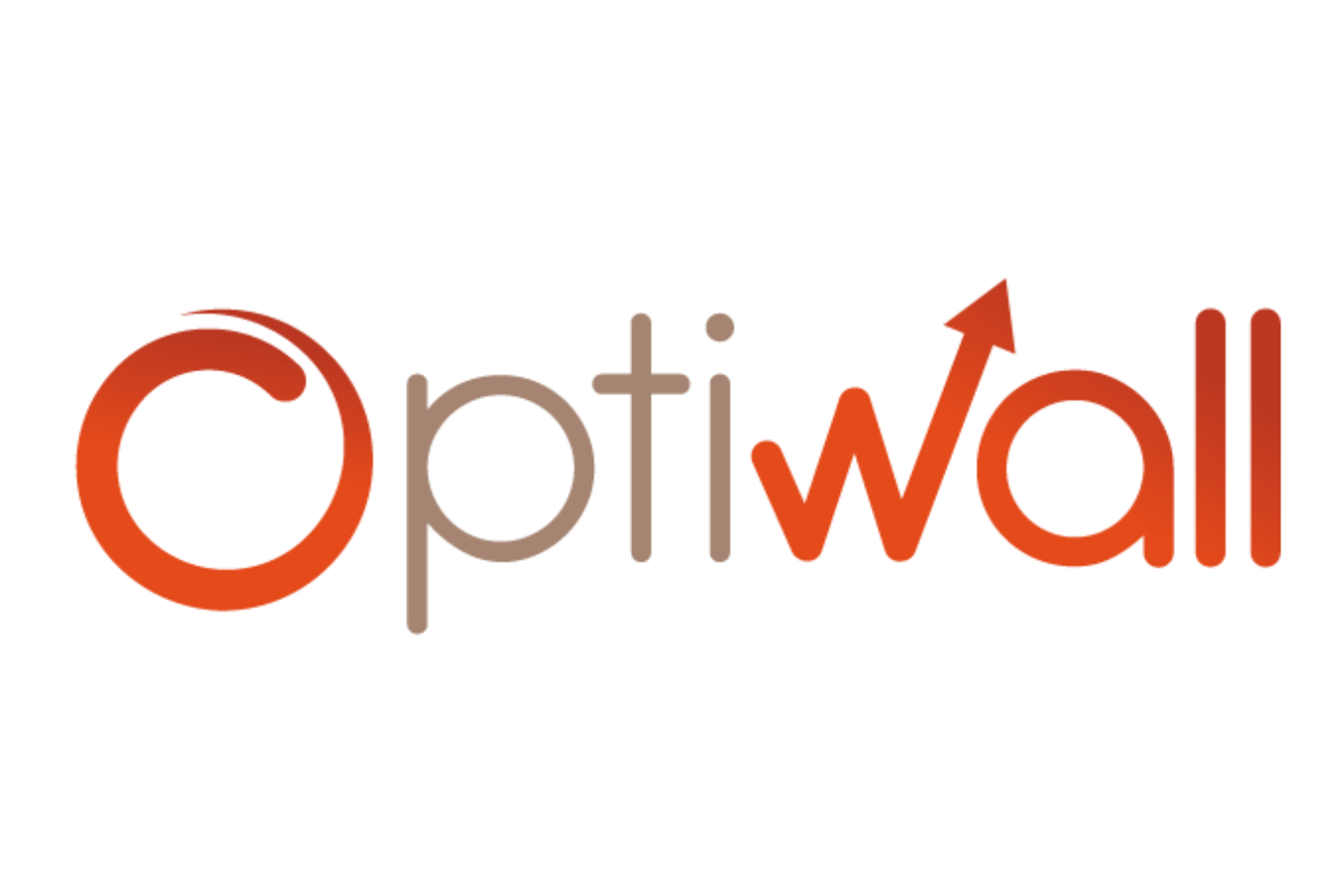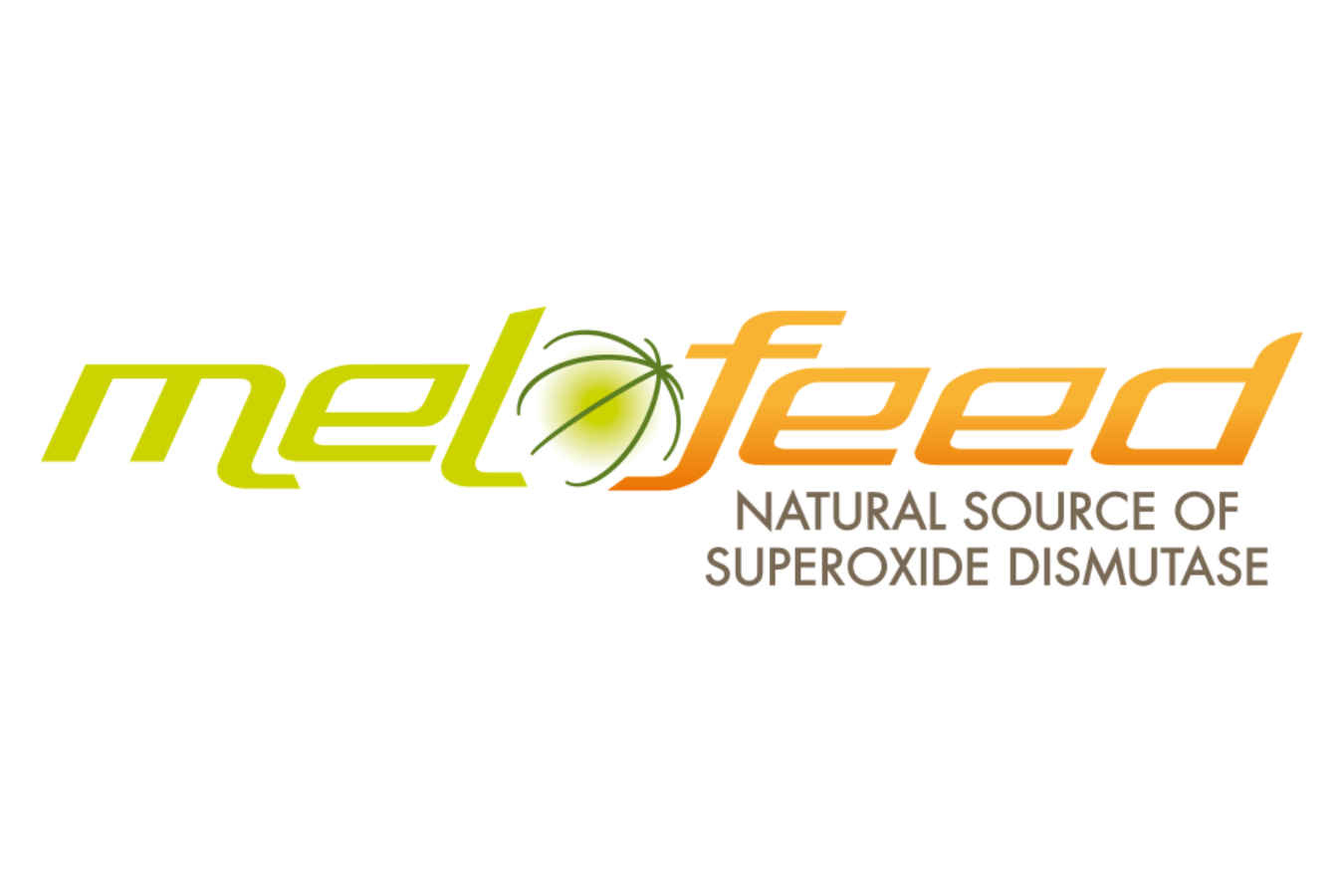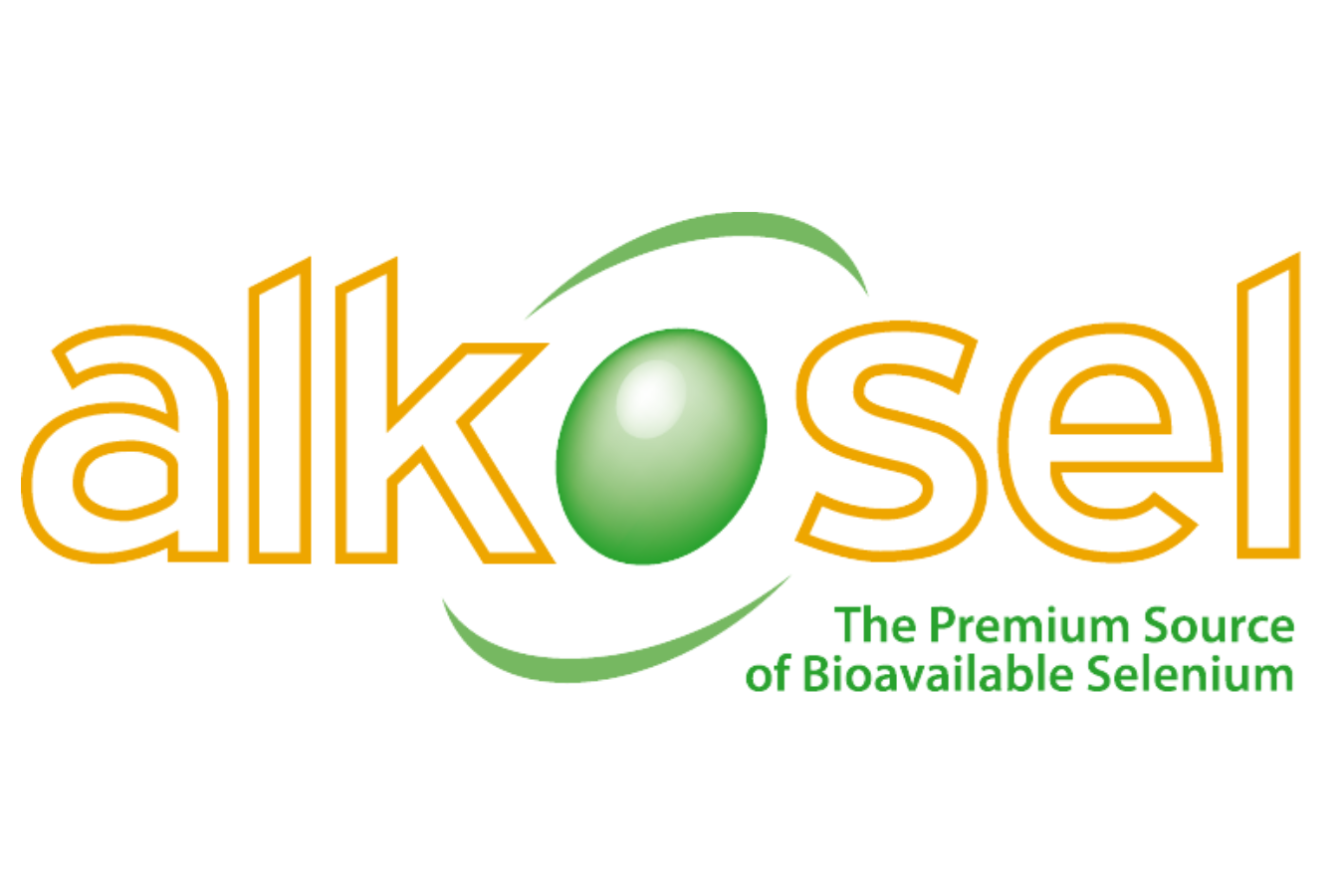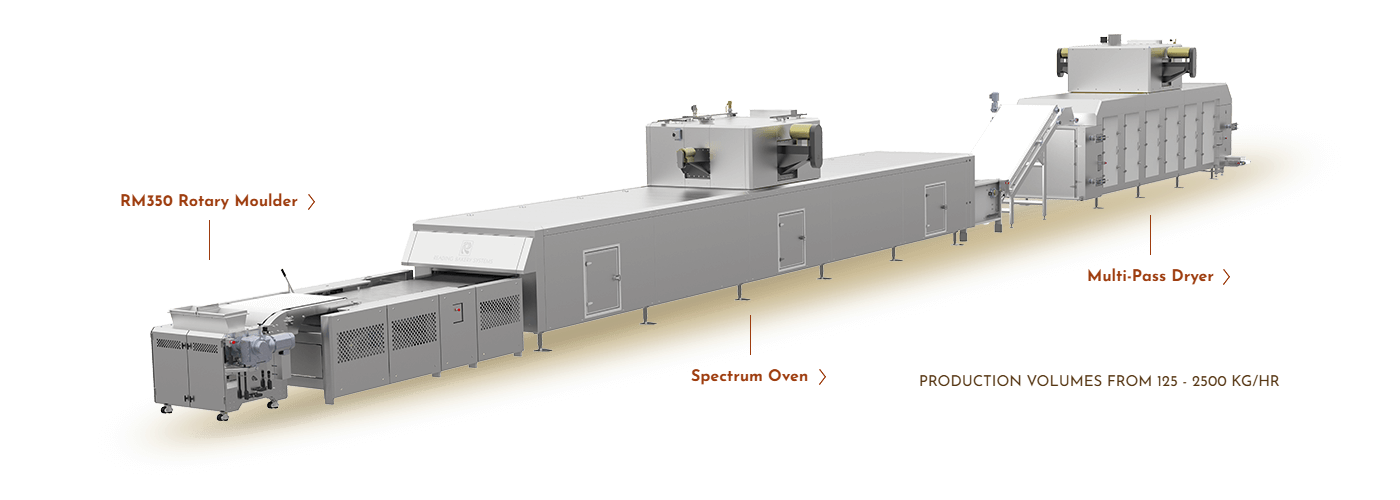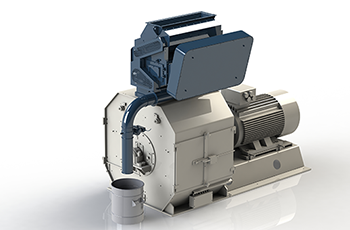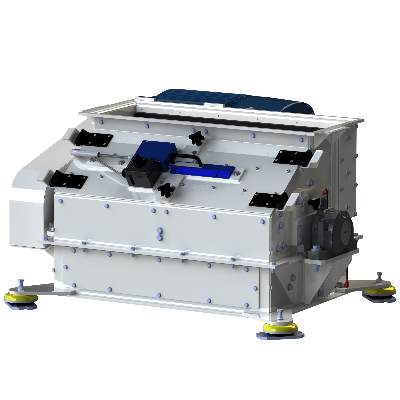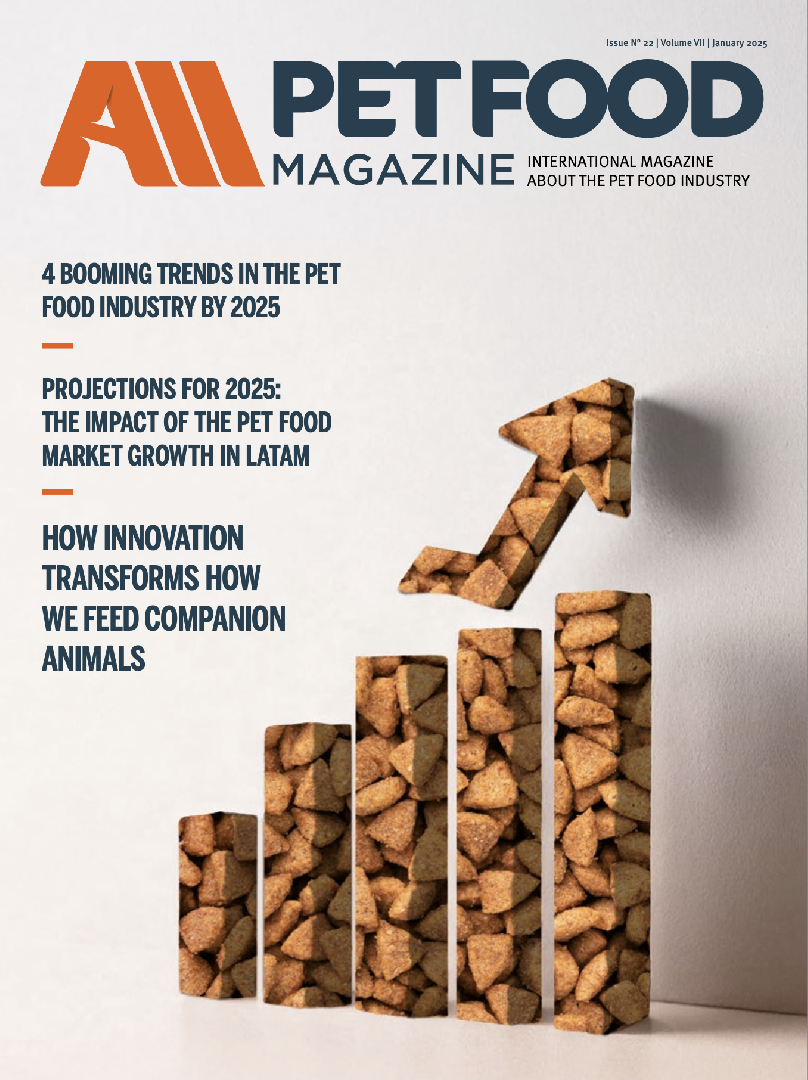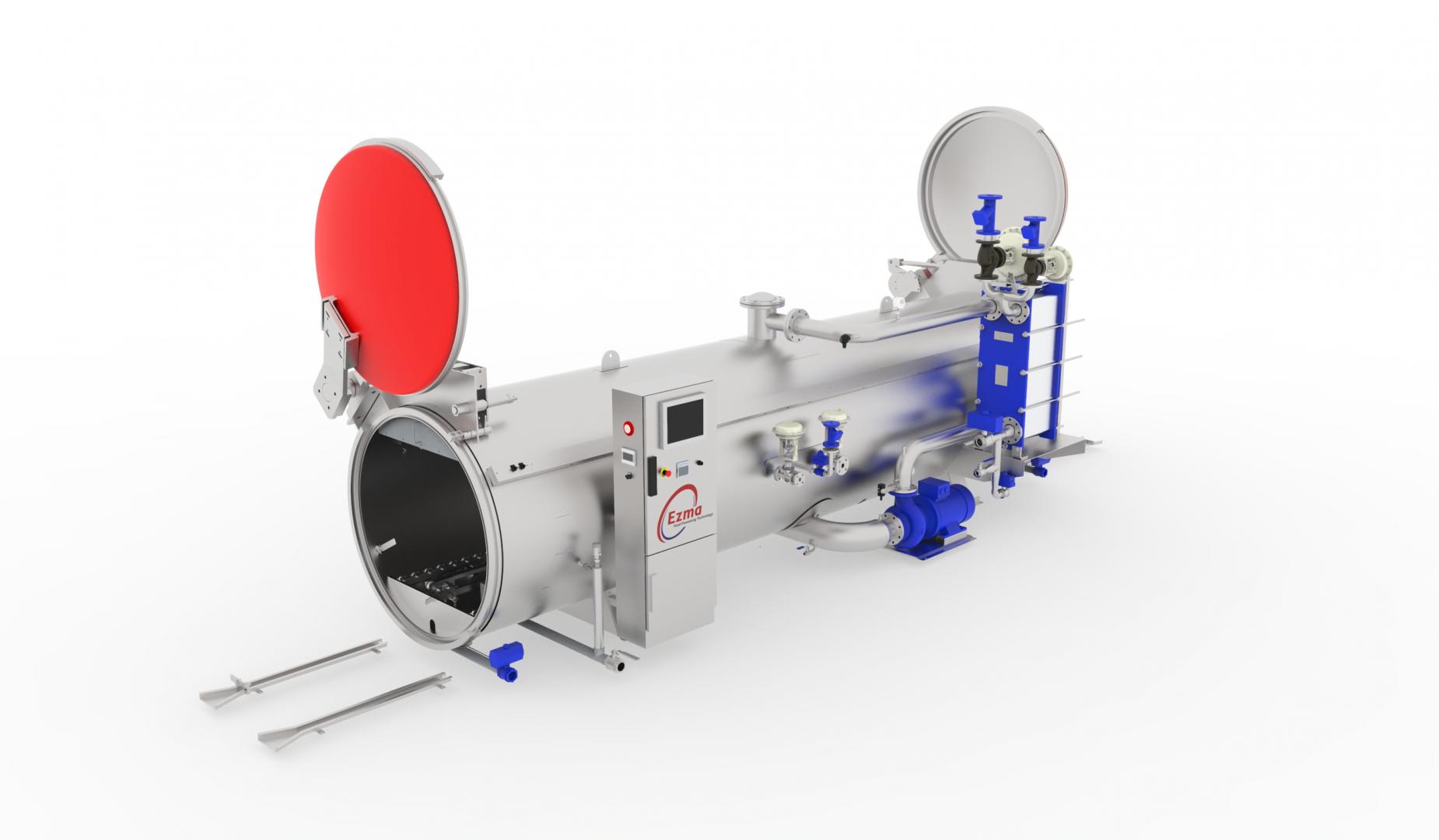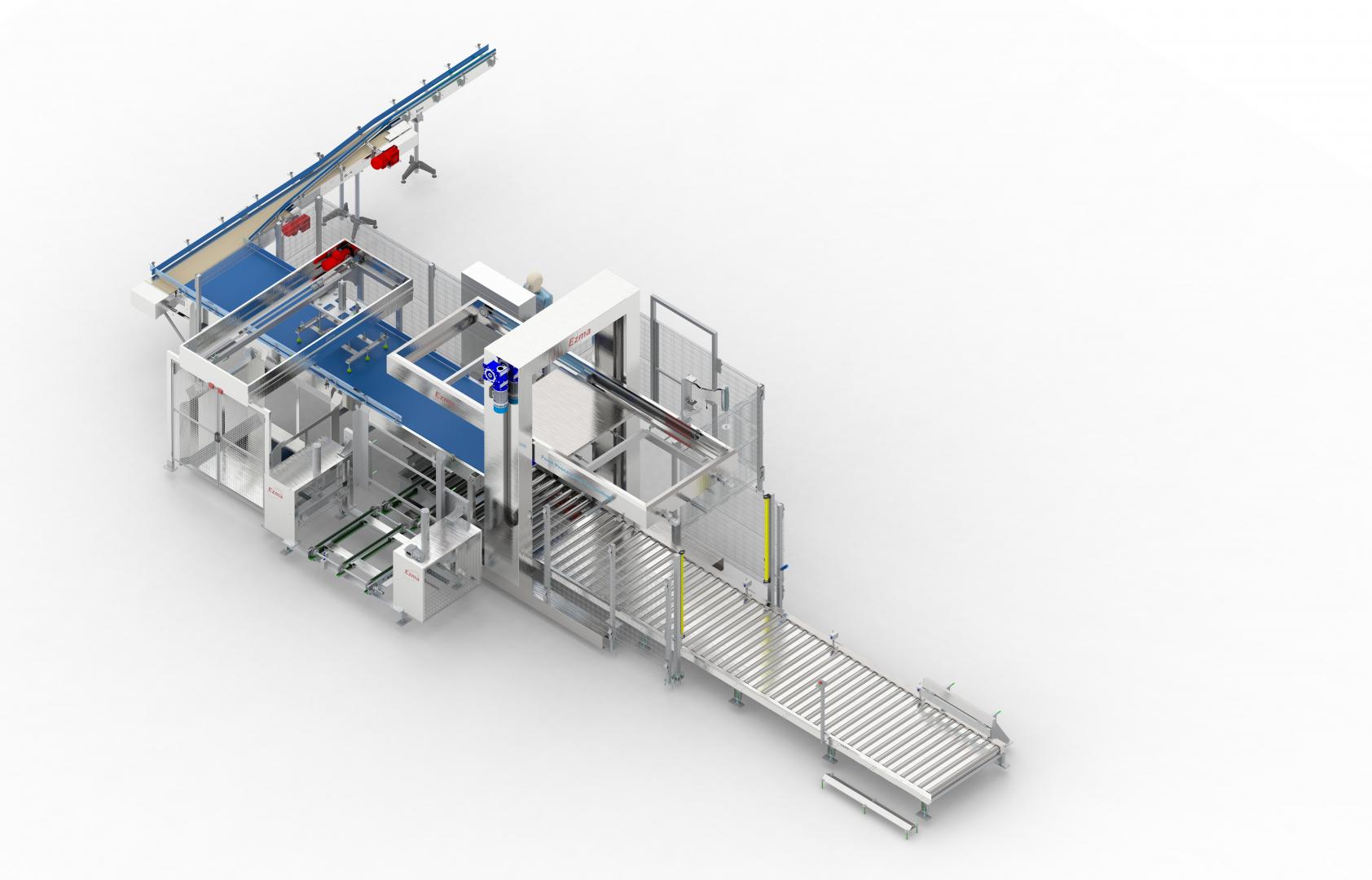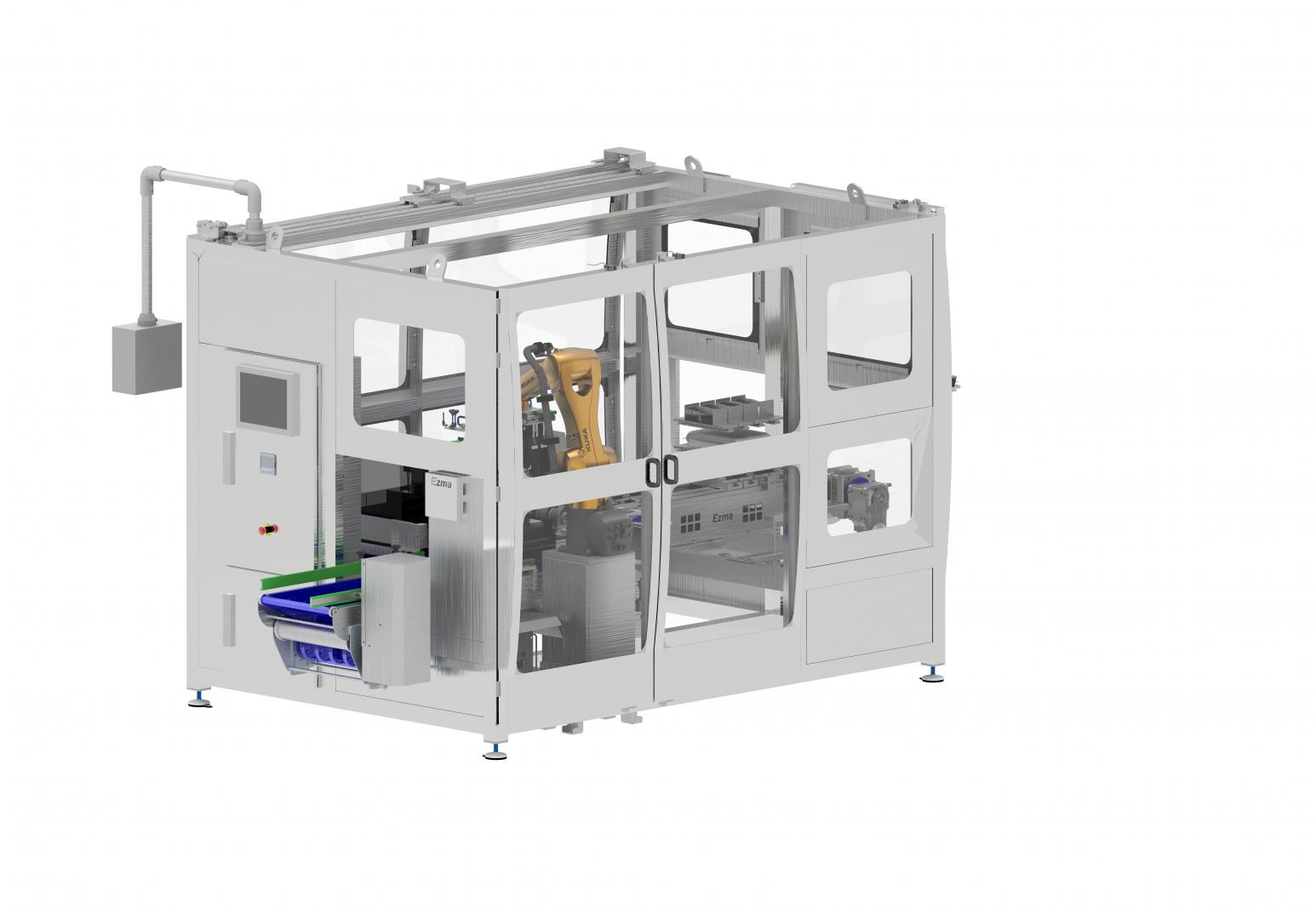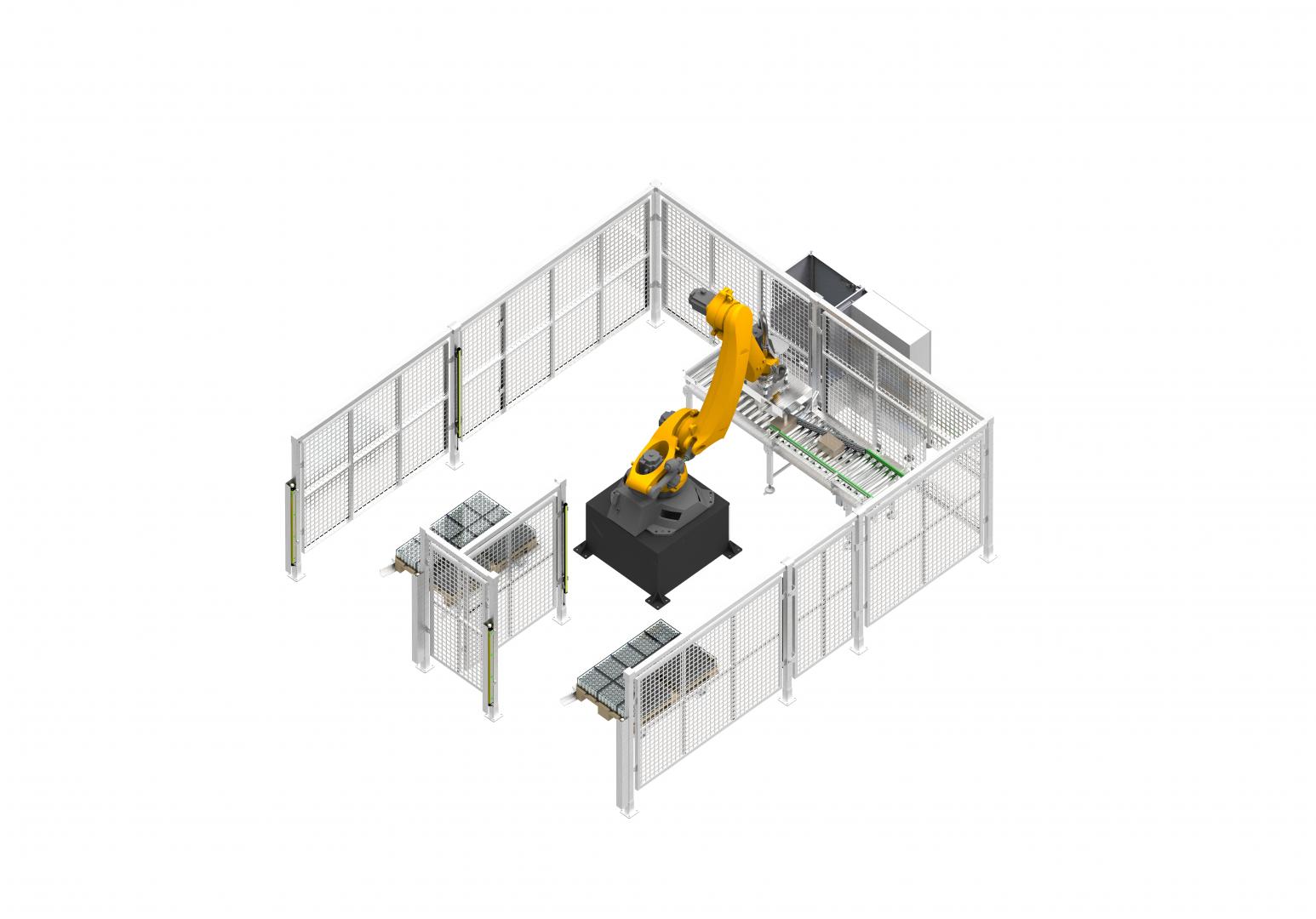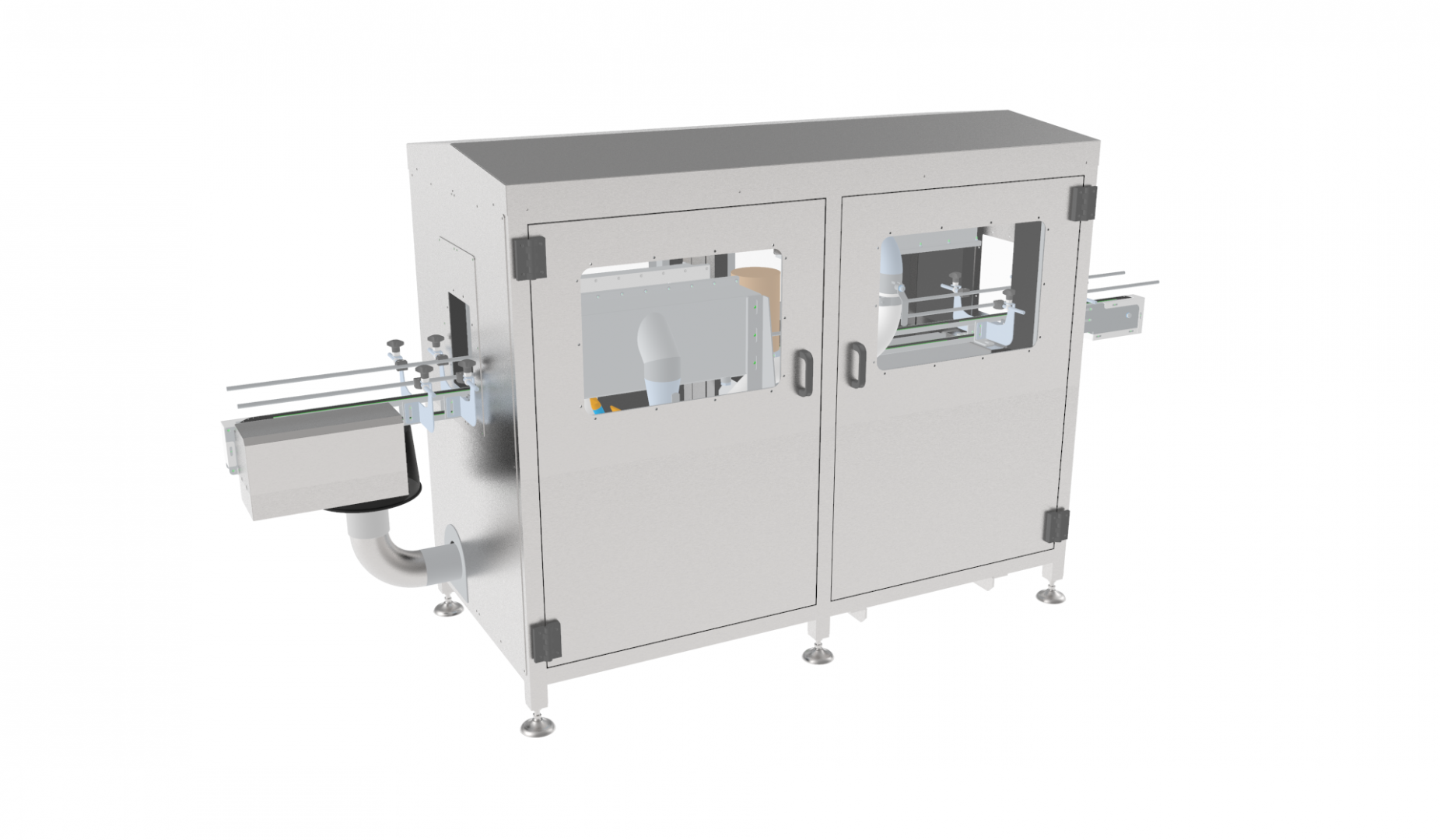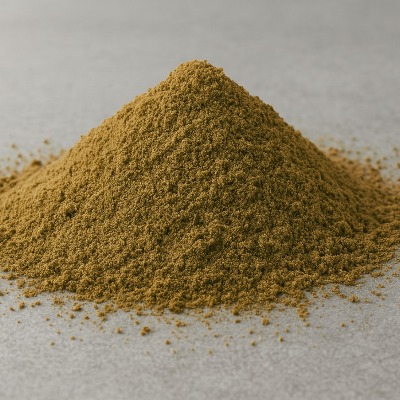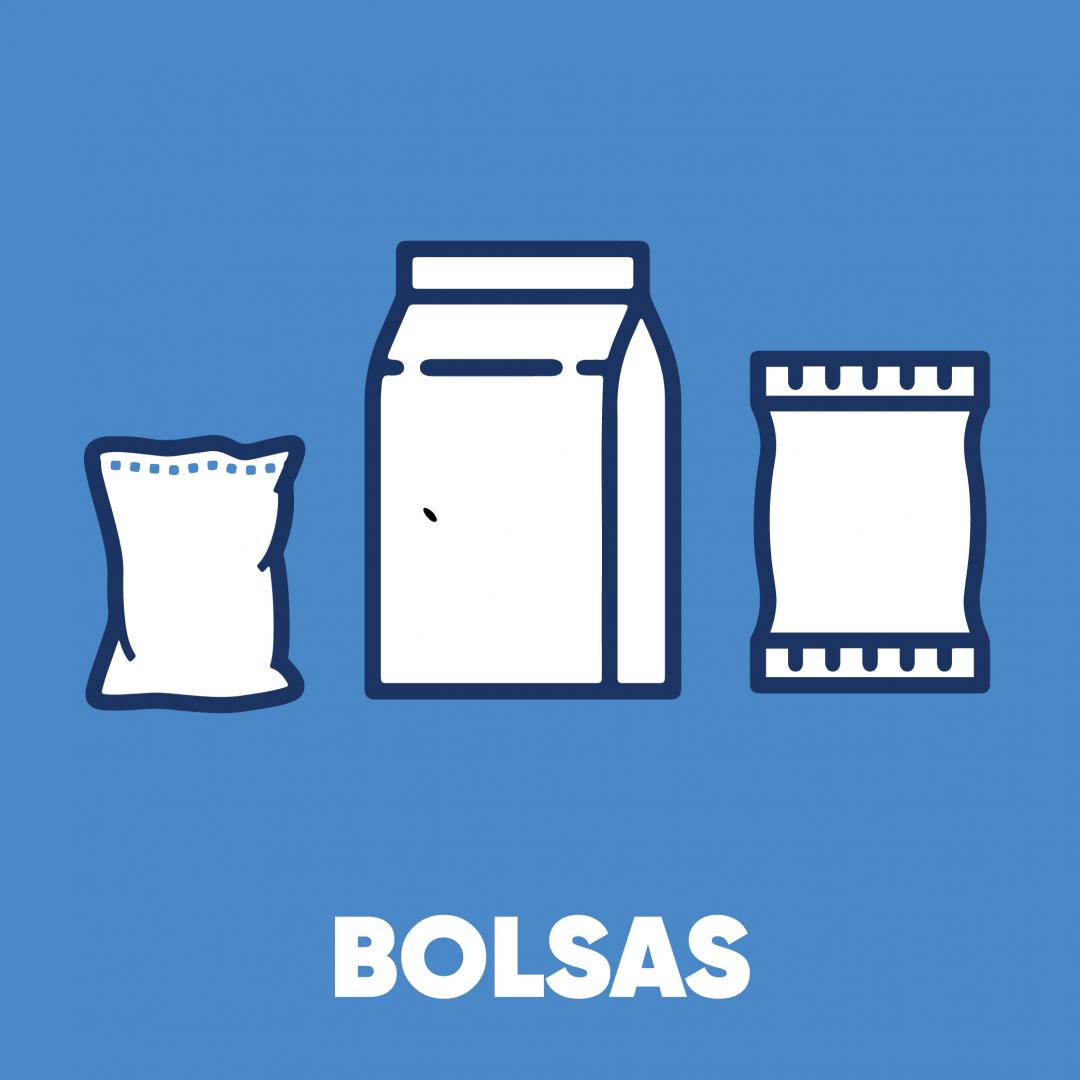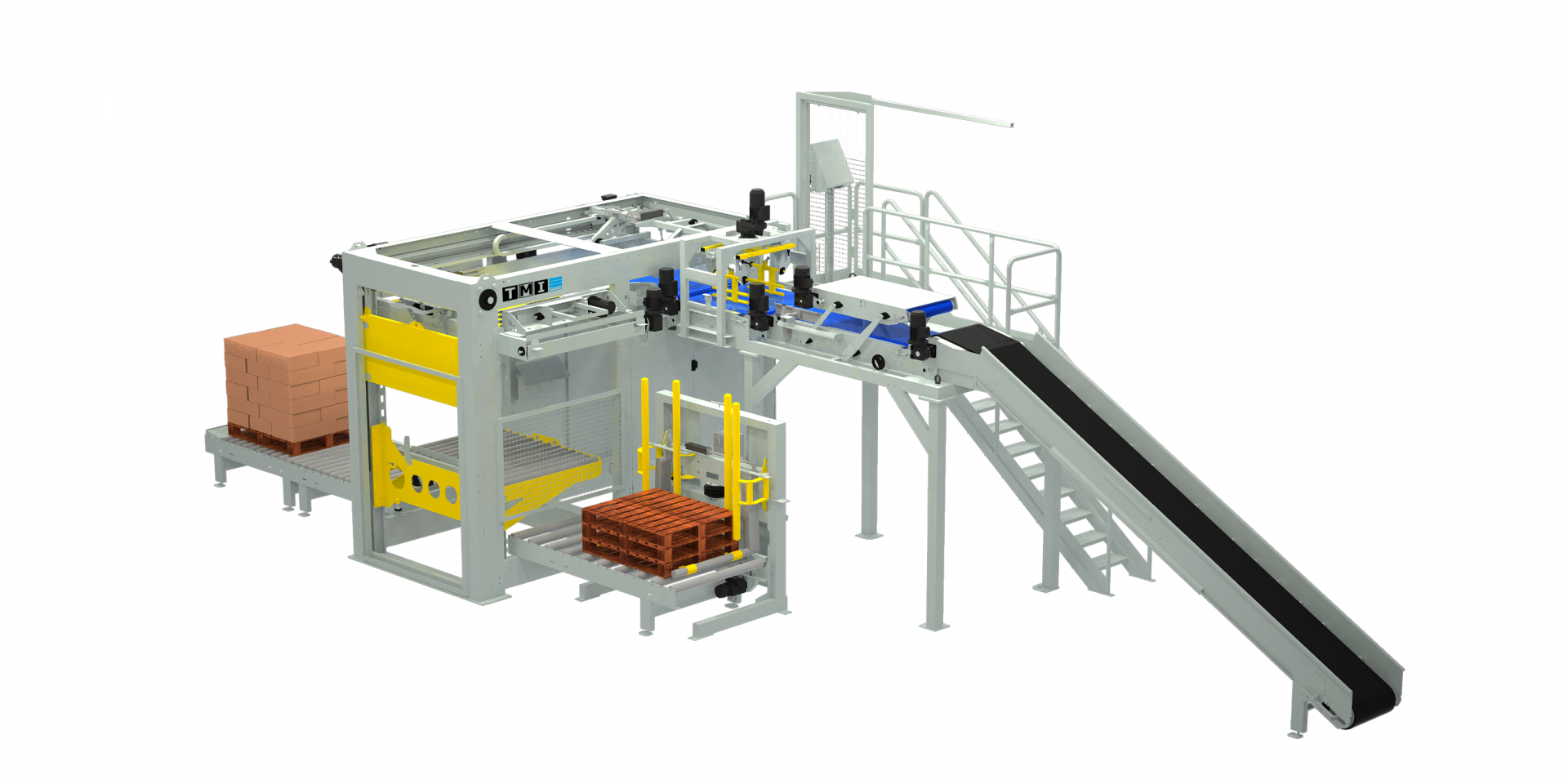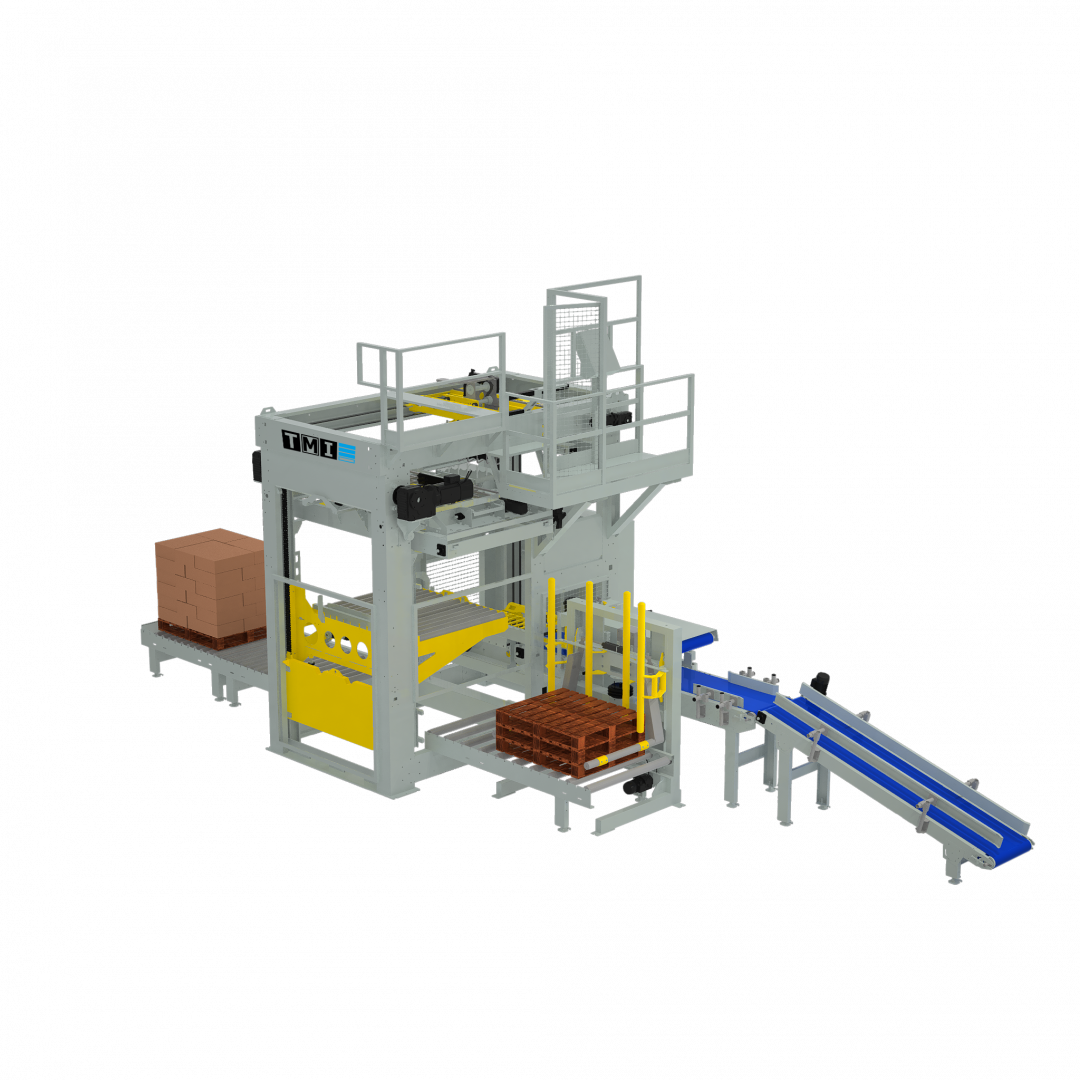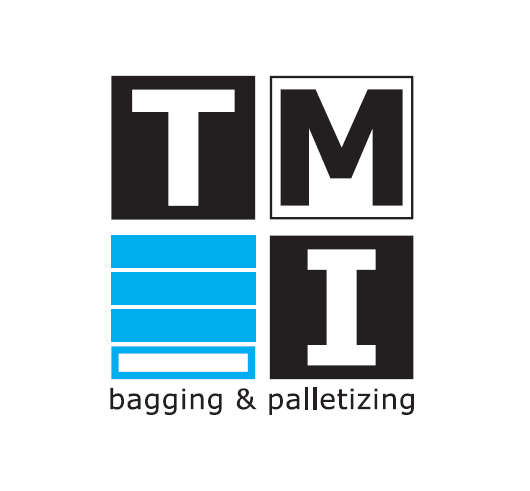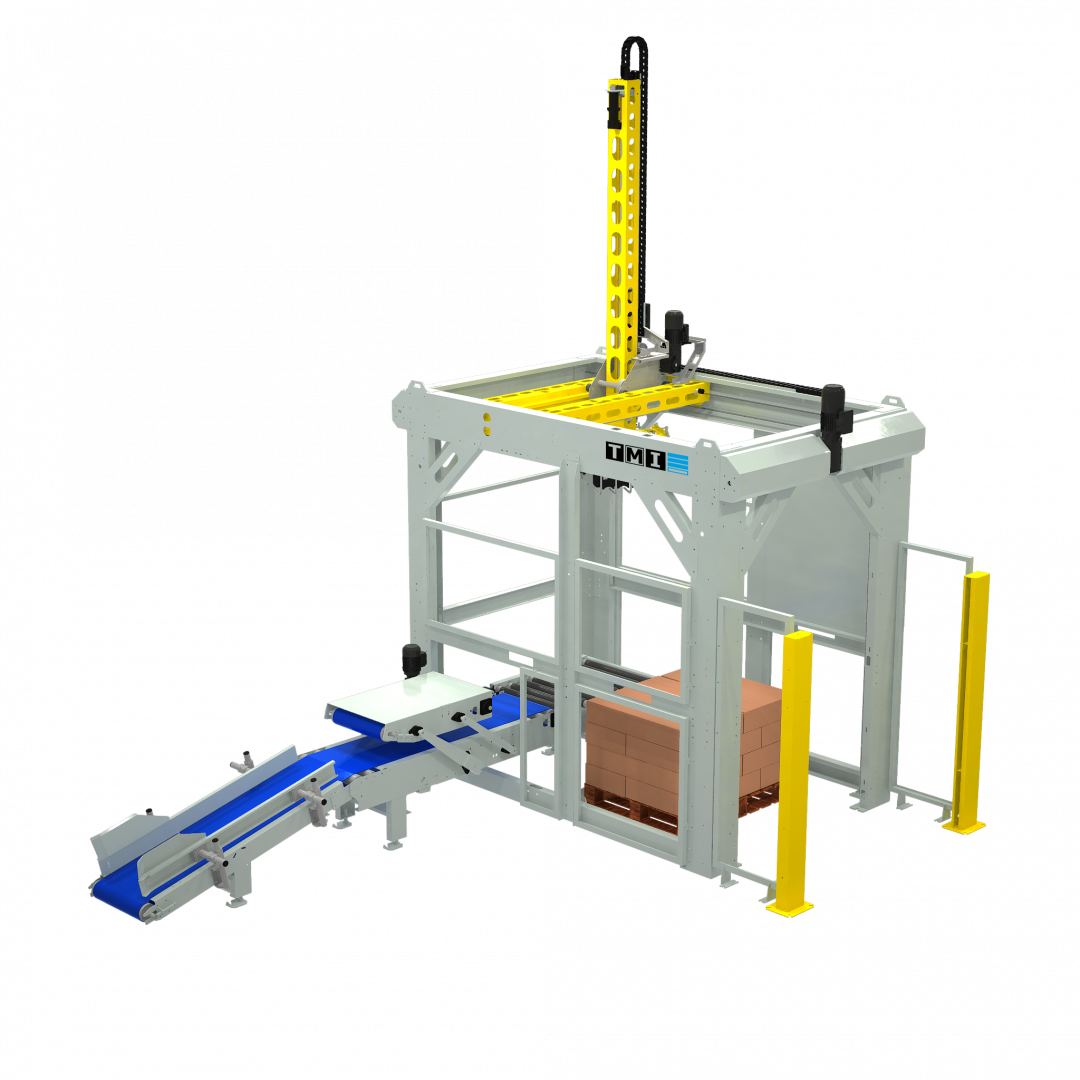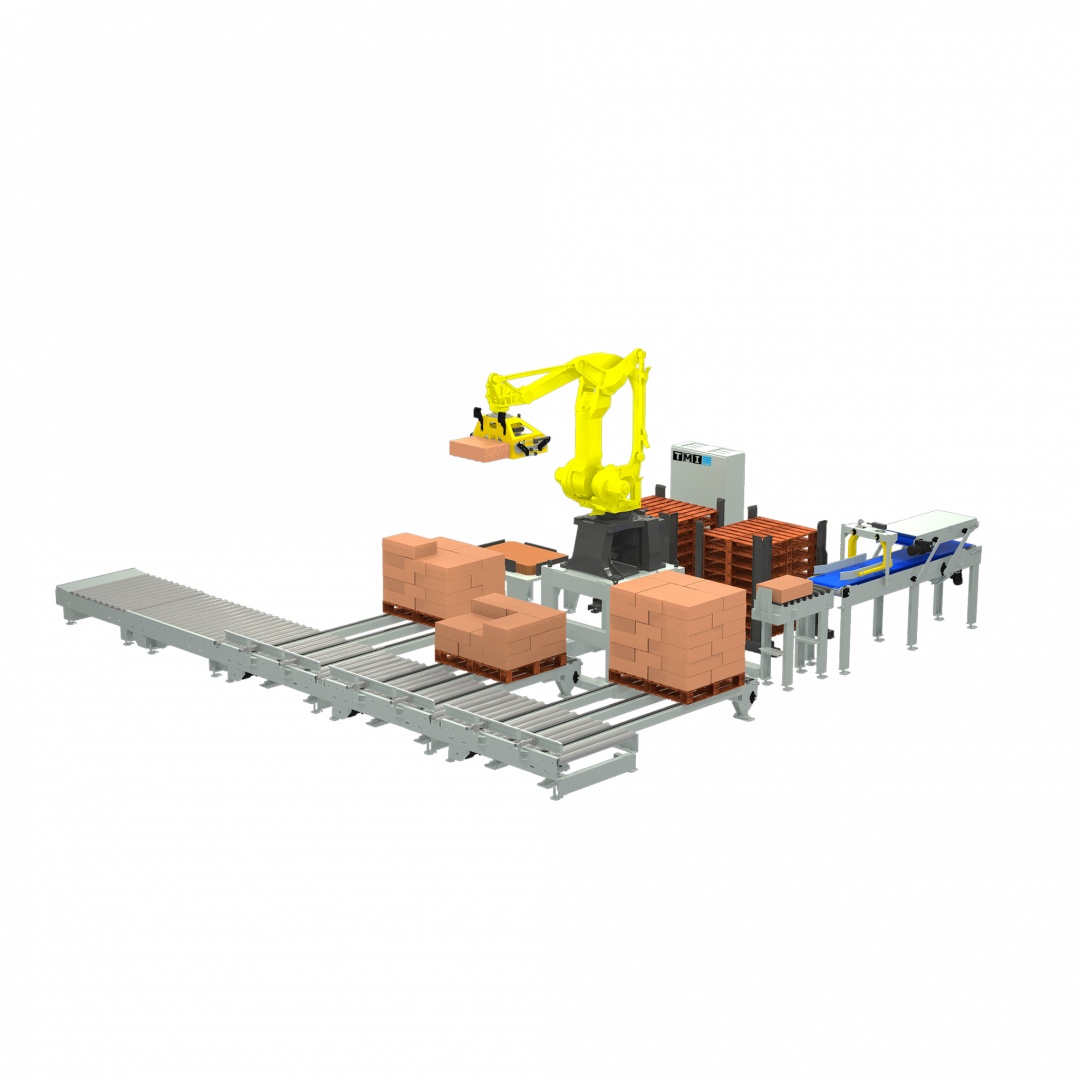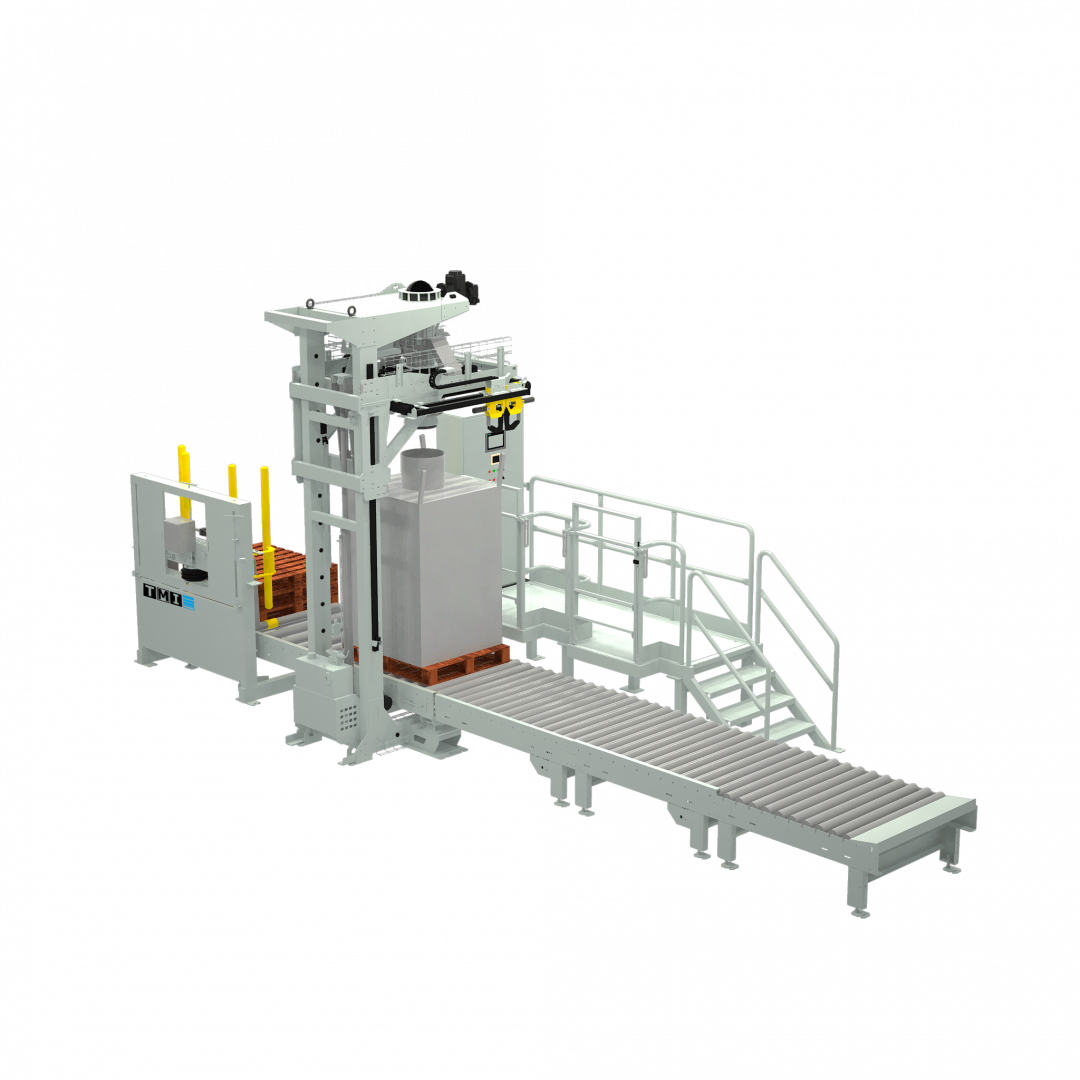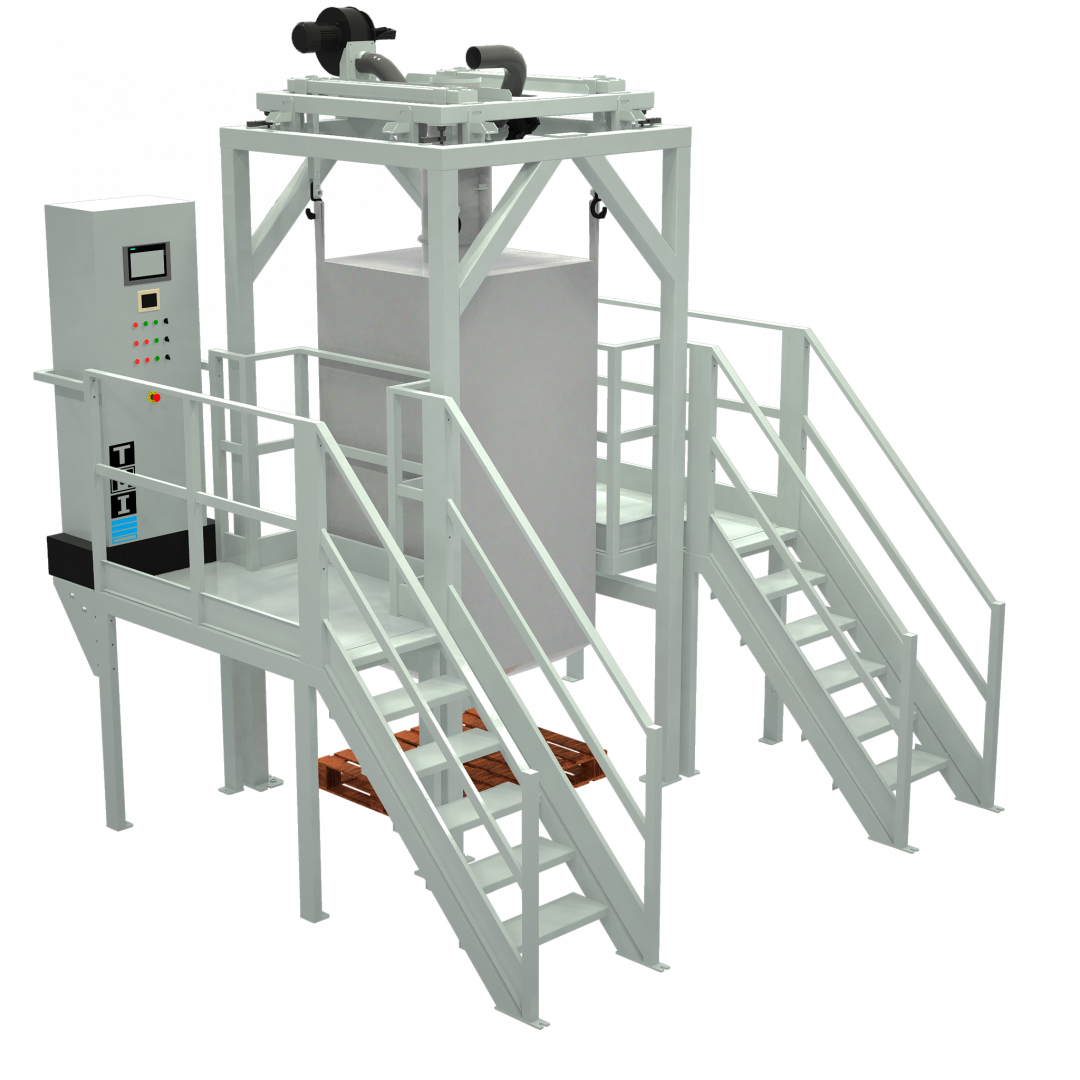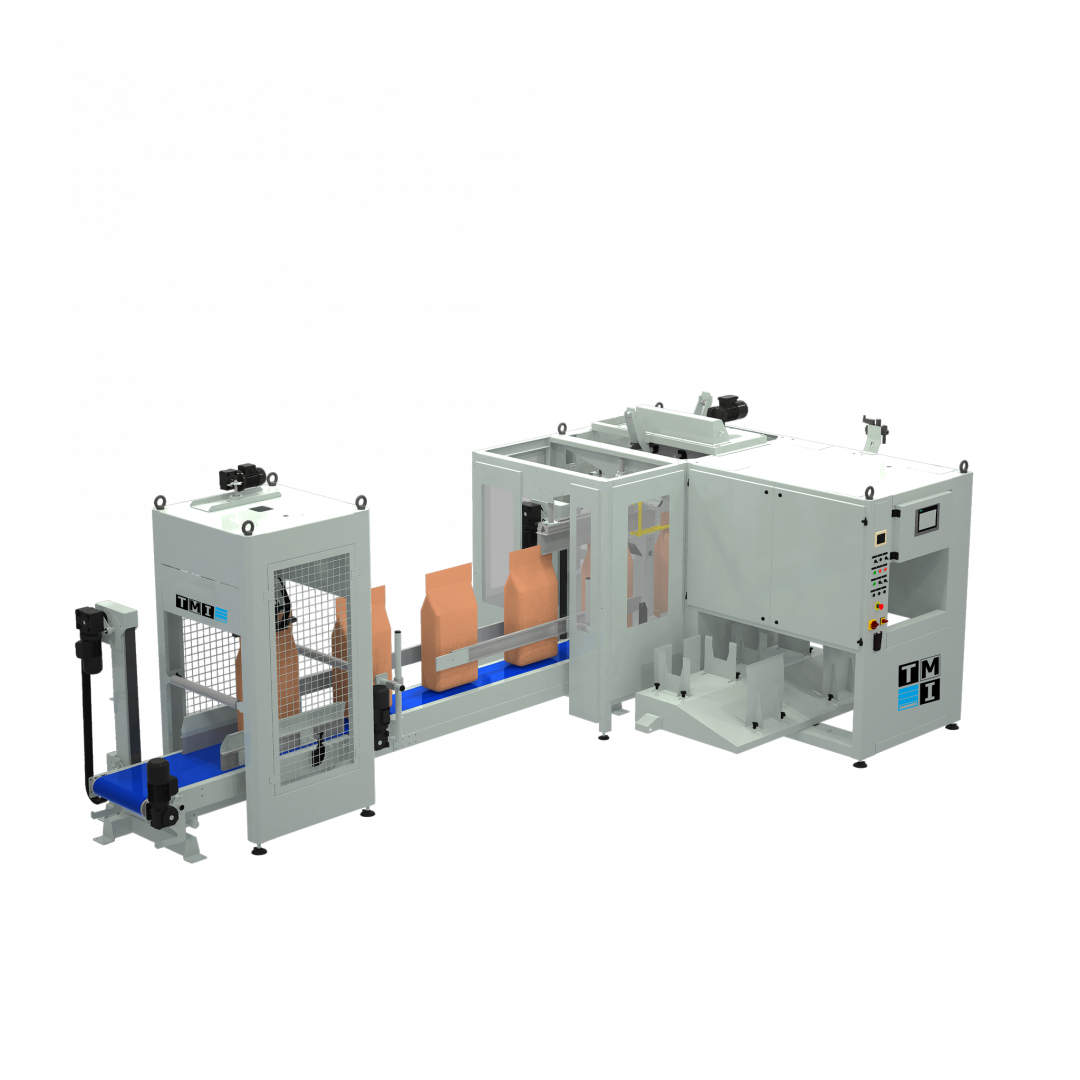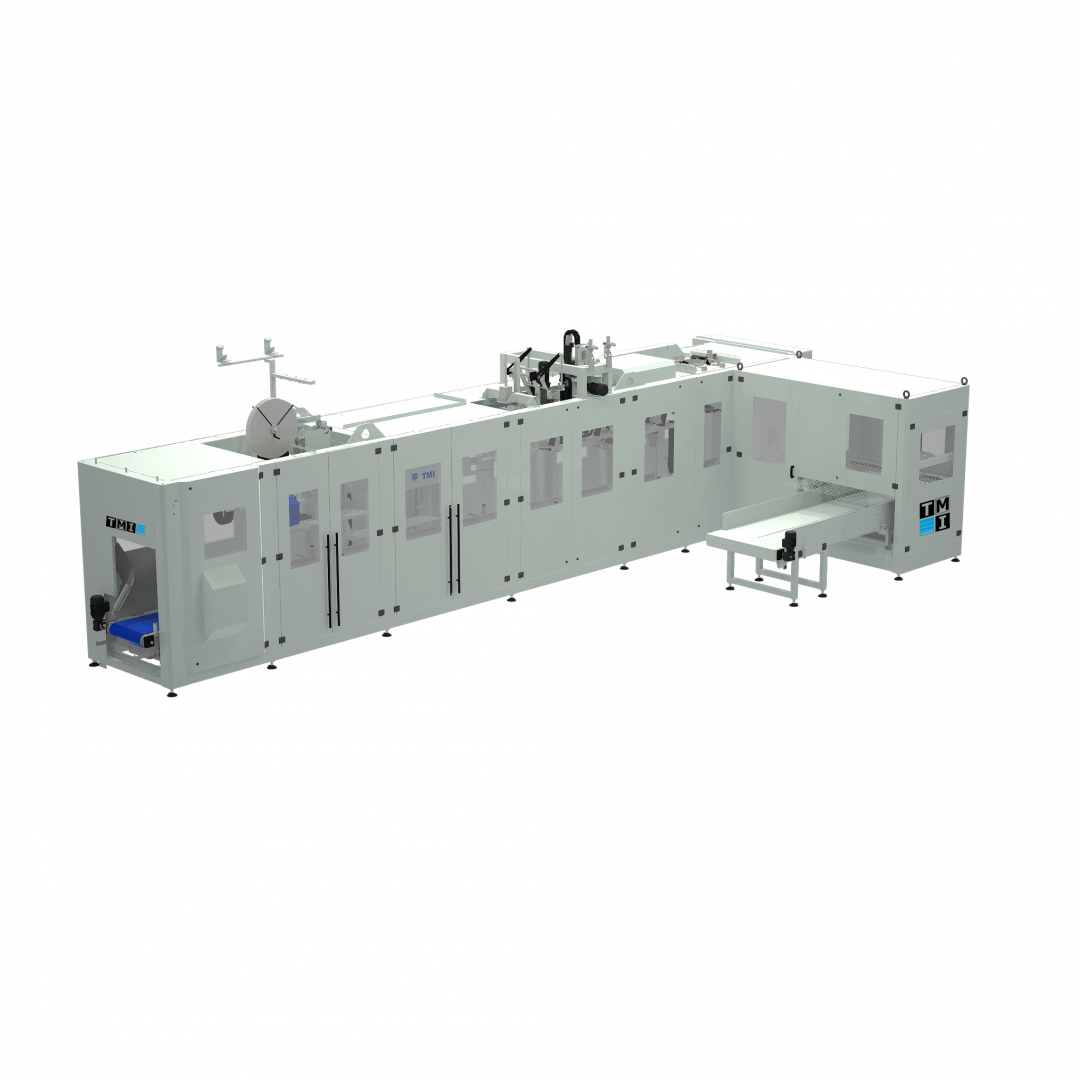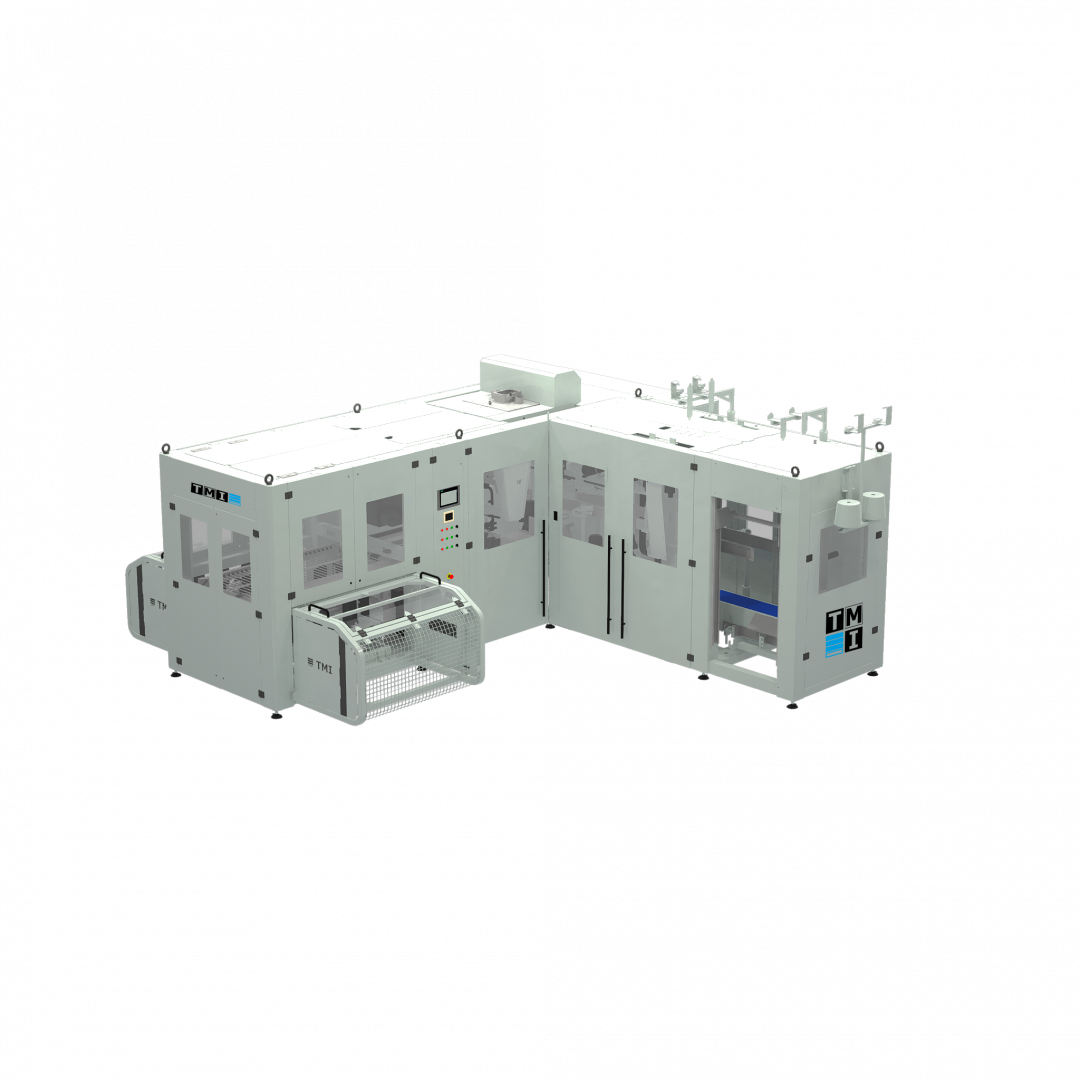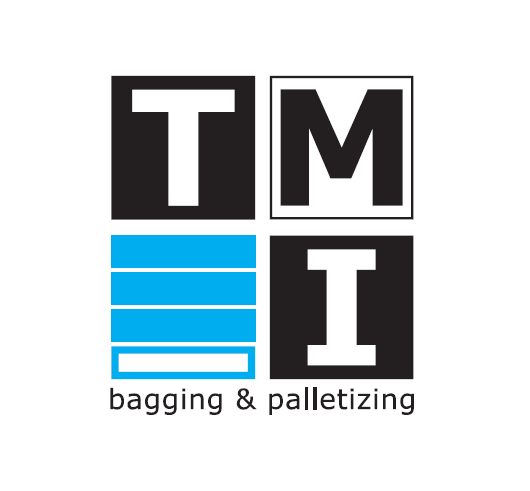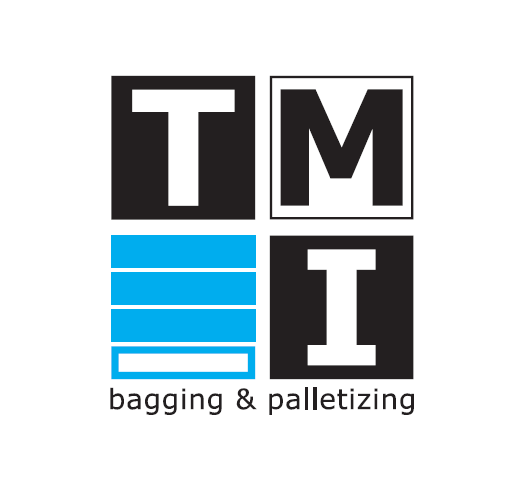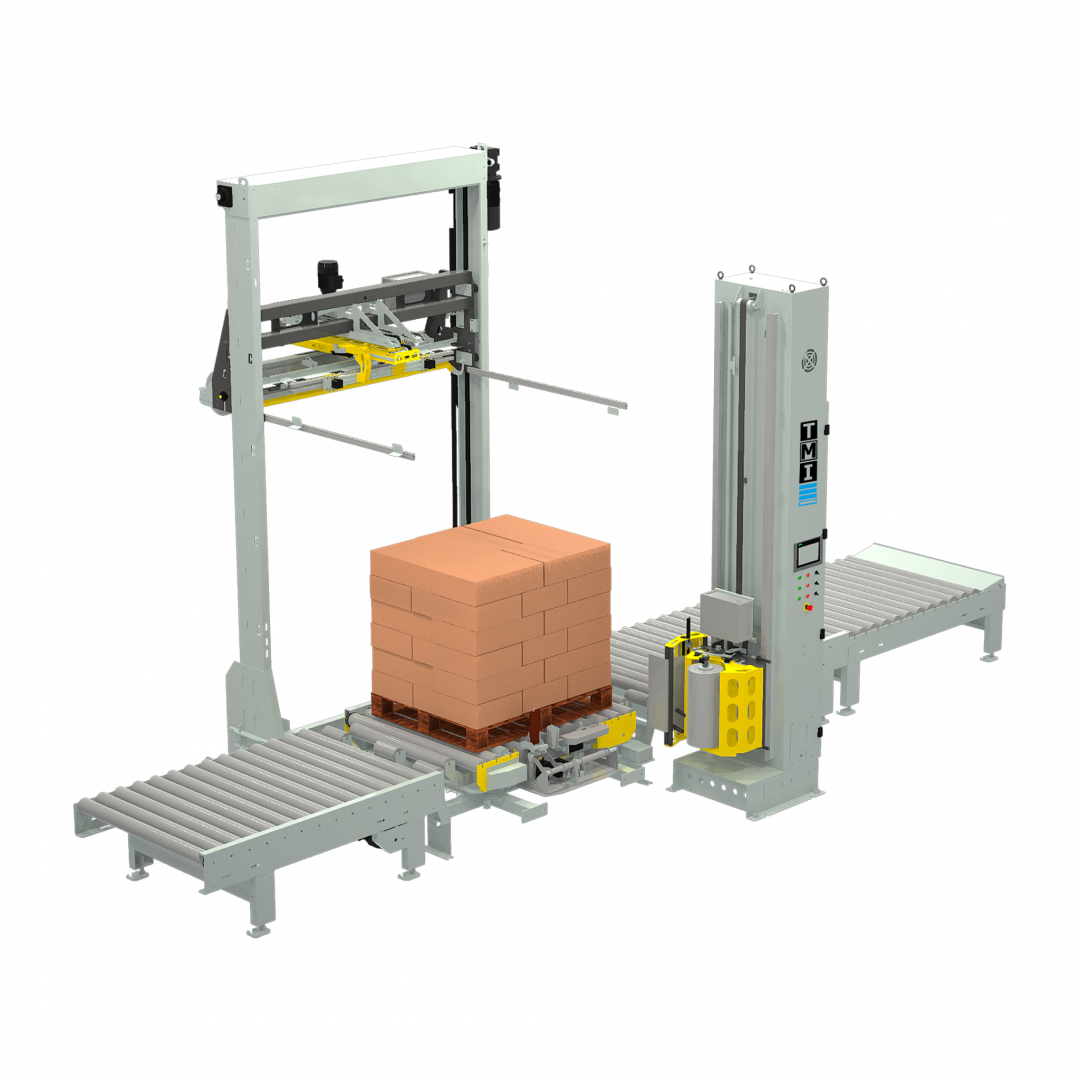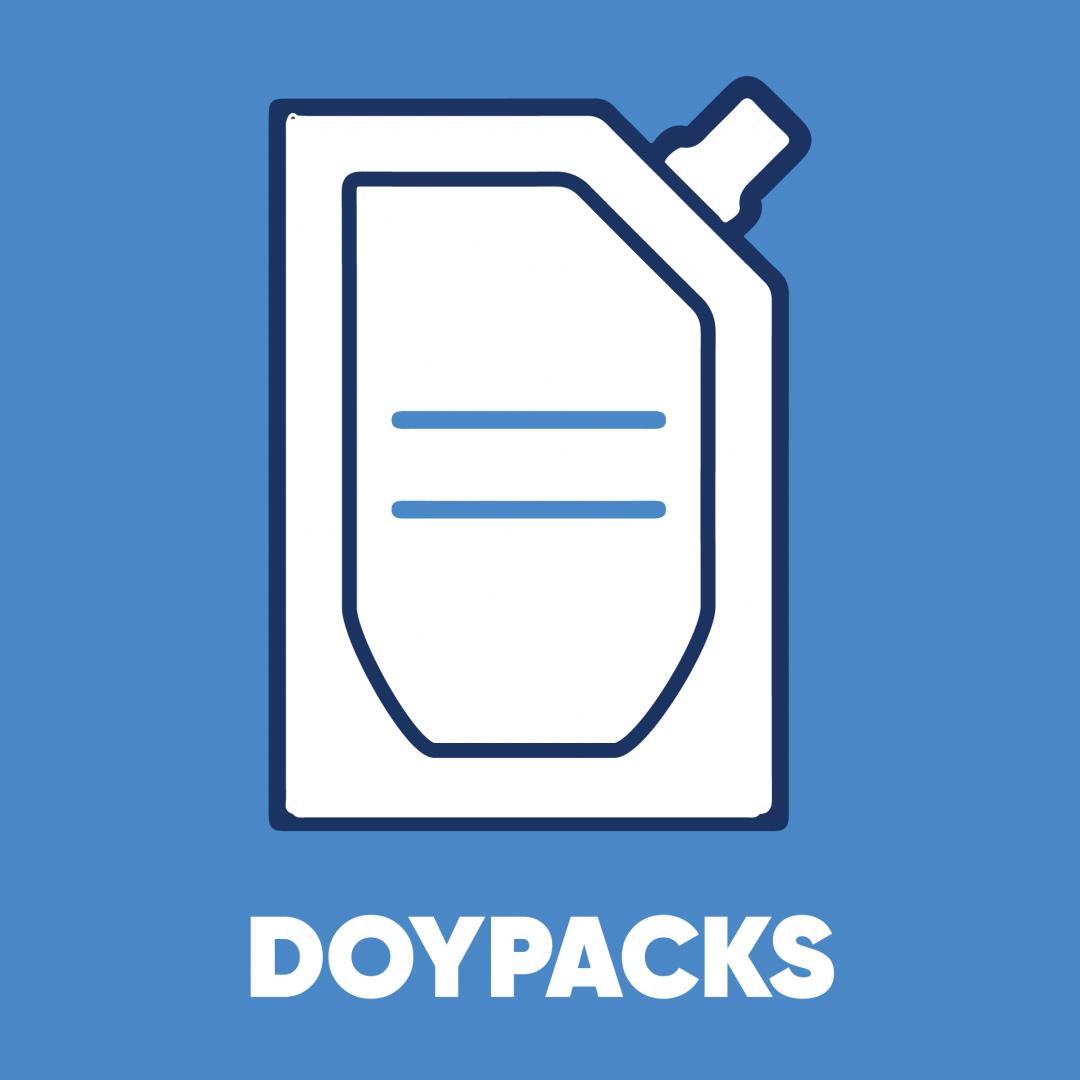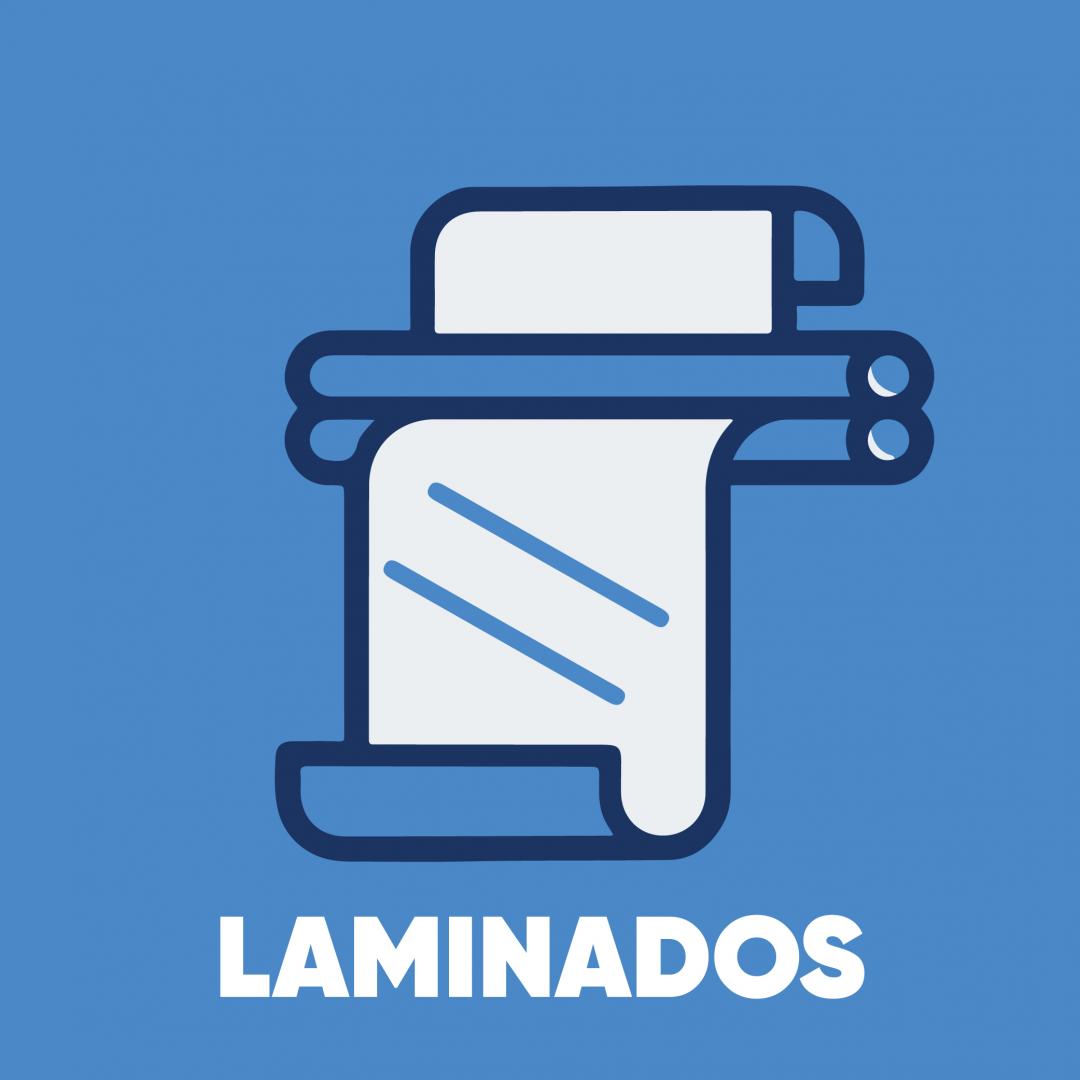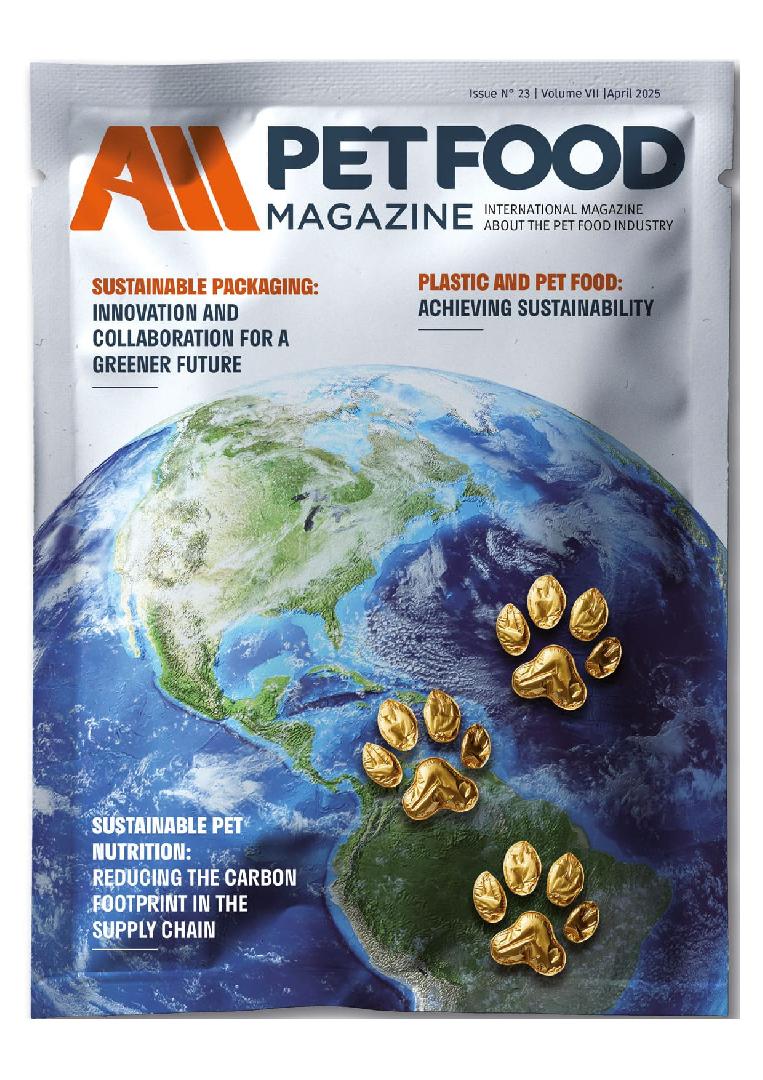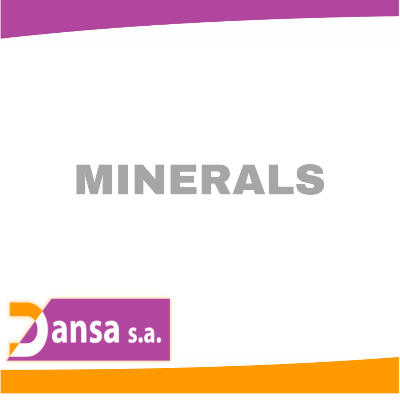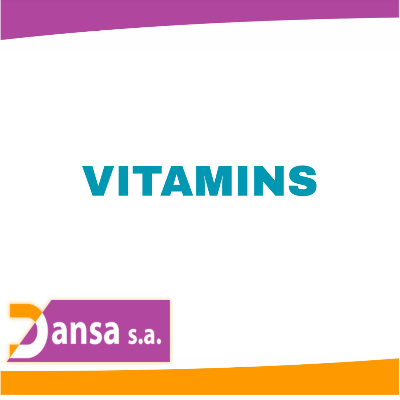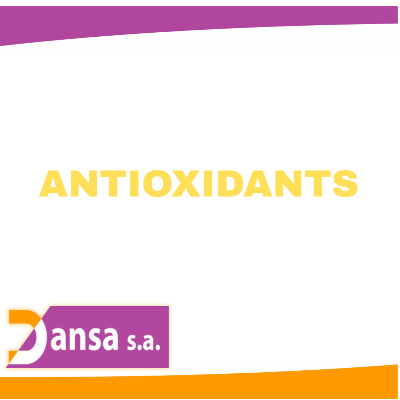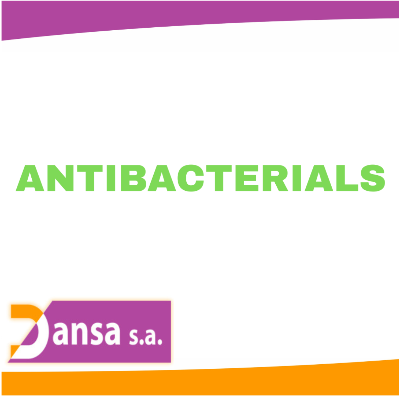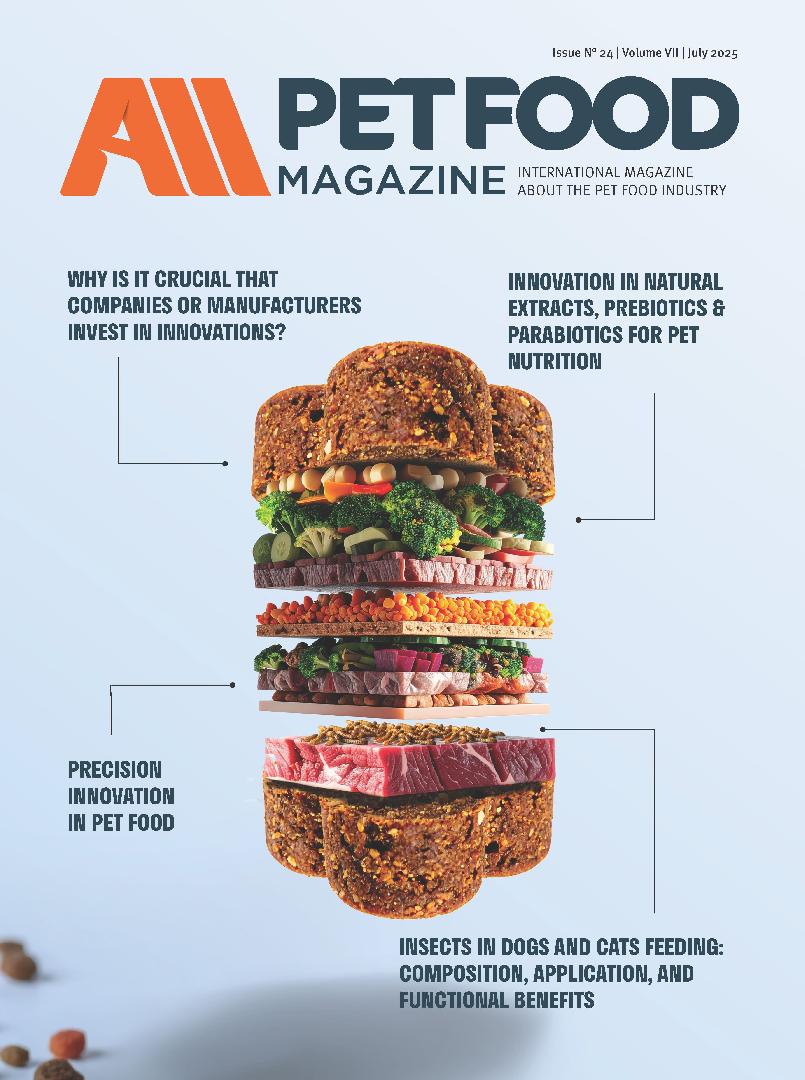

Products
Company News
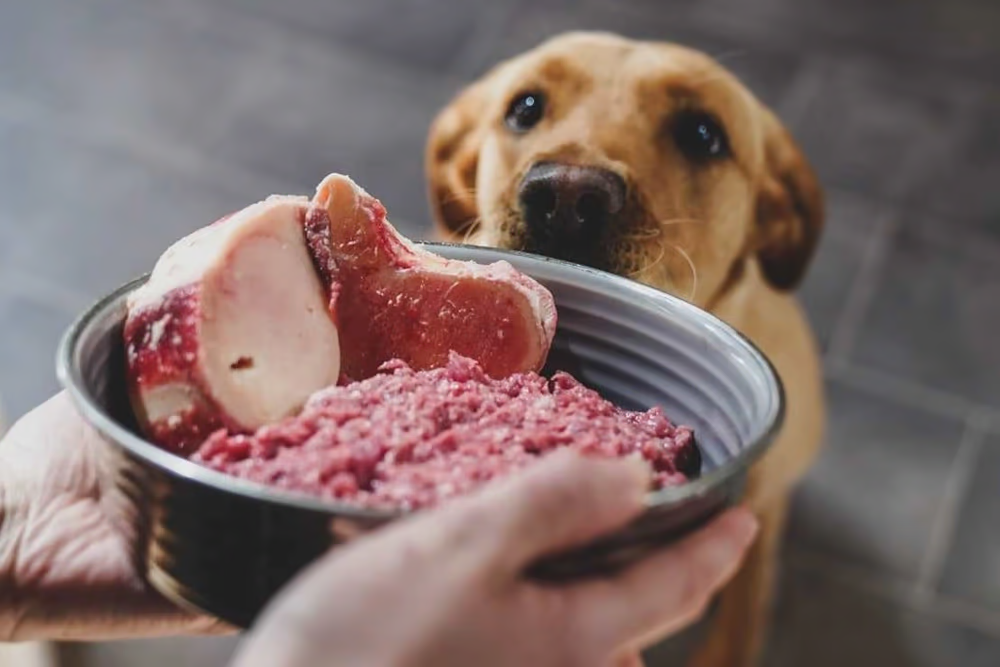 Barf Diet
Barf Diet
3+ MIN
18/08/2025
Responsible Raw Feeding
What is raw feeding?
Providing a diet of raw food for cats and dogs made up of raw meat, offal and raw bone, along with other ingredients such as fruit, vegetables, oils, nuts and seeds.
Some proponents of raw feeding also advise that dietary supplements are added to ensure the entire essential vitamin and mineral requirements are met. There are two types of raw feeding; homemade raw diets and commercially prepared raw diets.
What are the concerns with a homemade raw diet?
A fundamental concern, as with any homemade diet, is whether all the right nutrients are provided in the right proportions for healthy bodily function. There is a concern amongst some veterinary professionals that many homemade diets do not provide adequate nutrition.
In one study, 95 samples of raw food rations were analysed; 60% of the rations were found to have significant dietary imbalances and the remaining 40% were reported to have minor imbalances or were found to be balanced1.
Whilst homemade diets provide more flexibility for pets with very specific nutritional needs, they are challenging and require significant research and expert guidance to undertake with any success.
Commercially prepared raw foods
Some manufacturers produce frozen and freeze-dried raw foods for cats and dogs with both 'complete' and 'complementary' varieties available in a range of convenient formats. These products help owners to feed their pet raw diets responsibly. The 'complete' pet foods have been specially formulated to provide the nutritional balance a cat or dog needs in their daily diet, whilst a 'complementary' pet food will need to be fed alongside another food source. The pet food label will tell you whether it's 'complete' or 'complementary' along with directions for feeding and feeding guidelines.
Owners feeding 'complete' commercially prepared pet foods (in line with the feeding guidelines on the packet) can have confidence they are addressing all their pet's nutritional needs. Raw pet food manufacturers are always happy to provide further help and advice with their products.
Think about food safety
As with all commercially prepared pet foods, commercially prepared raw foods are subject to stringent legislation and require various tests to ensure they are safe. This, therefore, minimises the risk of food-borne contamination to both owner and the pet. In contrast, to prepare a homemade raw diet the ingredients must always be from safe and reliable sources to ensure food safety as they are often not subject to the same level of testing and control as commercially prepared raw foods.
Hygiene and handling tips
Good hygiene practice is always important and even more so when handling raw meat:
Purchase products that are in good condition. You should see no visible signs of damage to the packaging such as dents, tears, discolorations, etc.
Wash your hands with hot water and soap after handling either your pet or their food
Wash all surfaces that have been in contact with raw meat
After each use, wash your pet's bowls, dishes and utensils with soap and hot water, rinse properly and dry before the next use
Correctly store unsealed containers/open bags to limit any risk of cross contamination
When storing pet food in the fridge ensure raw products are at the bottom
When buying prepared raw foods you can find the storage instructions on each package.
Considering a change in diet for your pet?
If you are considering a change in diet for your cat or dog, there is a range of reliable sources of advice from your vet and nutritionists. They'll be able to discuss your pet's needs, make suitable recommendations and give guidance on how to transition from one food to another.
DEFROSTING RAW PET FOOD TIPS:
Defrost in a sealed container or your pets bowl and cover it
Defrost in the fridge or at room temperature for an appropriate time
Never refreeze
Never discard the thaw juice as this can contain essential nutrients for your pet
Consult the manufacturer for further information on preparation and storage.
Download the factsheet.
References
1 Dillitzer, N, Becker, N, Kienzle, E. Frequency and extent of nutritional imbalances in 'bone and raw food' (barf) rations.
Source: FEDIAF
 Market Information
Market Information
5+ MIN
18/08/2025
The 27th Edition of Pet Fair Asia Will Take Place From 20 to 24 August 2025 in Shanghai, Marking The Largest Event in its History
Pet Fair Asia, the largest pet industry event in Asia, will open its doors from 20 to 24 August 2025 at the Shanghai New International Expo Centre (SNIEC), covering a record 310,000 sqm and hosting over 2,600 exhibitors from China and abroad.
This edition comes amid global economic uncertainty and challenging trade relations. Despite these headwinds, Pet Fair Asia has maintained a double-digit growth for several years, underscoring its vital role in the industry and confirming China's position as a key global manufacturing and outsourcing hub for the global pet sector.
Pet Fair Asia 2025 will also be the heart of a series of activities taking place across Shanghai in August, designated by the Shanghai Municipal Commission of Commerce as the 'Pet-Friendly Month'. This governmental initiative aims to promote a healthy pet economy, improve the business environment, foster a pet-friendly city, and stimulate growth in the sector. In this context, Pet Fair Asia has been a driving force, committed to the sustainable development of China's pet industry, supporting domestic enterprises in scaling up, enhancing competitiveness, and encouraging harmonious coexistence between pets and people in the city.
GLOBAL REACH ON THE RISE
Pet Fair Asia is attracting more international attention than ever. The number of international companies and brands exhibiting at the show continues to rise and this year they will occupy two full dedicated halls. In addition, the show will also host pavilions from Japan, New Zealand, Poland, South Korea, Taiwan, and the United States.
Overseas visitor numbers have also surged in recent years. In 2024, the show welcomed 124,000 professionals from 91 countries, with international attendees making up 10% and registering an impressive 41.8% increase over 2023. The 2025 edition is expected to continue this upward trend.
Mr. Sherman Yeong, Secretary of the Malaysia Pet Association (MPA) and organizer of the Malaysia Delegation at Pet Fair Asia, stated: 'We have cooperated for two consecutive years with Pet Fair Asia to bring Malaysian buyers to the show. This year, we will lead a group of seven members from Malaysia's pet industry. The delegates are eager to explore the latest innovations, discover cutting-edge products, and connect with potential suppliers through a series of business matching activities and site visits arranged by the organizer.'
A HUB FOR INNOVATIONS AND FUTURE TRENDS
Given its growing scale and international profile, the show aims to become Asian hub for unveiling the latest trends and revealing where the pet industry is headed. Pet Fair Asia 2025 will go beyond traditional booths and conventional pet products, offering insights and firsthand experiences into life with pets at 360 degrees.
A key highlight, the DISCOVERY zone, will feature the latest products launched globally within the past three months, catering to both science-savvy pet owners and lifestyle-focused trendsetters. More than 300 exhibitors, including international and domestic leading brands as well as emerging new companies, will showcase here over 500 cutting-edge new products and the year's best-sellers. Part of this area will also be the GENIUS HUB, which will offer a glimpse into the high-tech innovations, such as the world's first pet smartphone enabling video chats, smart driving companions for dogs, gourmet pet food processors and AI-powered robot dogs - showcasing China's innovative approach to living with pets.
Pet Fashion Week will also take center stage inside Pet Fair Asia, blending human - pet lifestyle trends and setting new style benchmarks for our furry companions. This area will feature the debut of pet-friendly products from home appliance brands such as Blueair, Haier and consumer insights from leading platforms including Duoyin (China's version of Tik-Tok) and Taobao (one of China's largest e-commerce platform). Across 12 themed runway shows, ranging from haute couture and accessible luxury to chic athleisure, audiences will enjoy new collections from brands including Hugo Boss, Ralph Lauren and Tommy Hilfiger among others.
Furthermore, Start-Up Independent Designers & Brands Zone will highlight creative and stylish products from more than 50 emerging Chinese brands, discovered through the influential social media platform Little Red Book.
UNMATCHED SCALE AND DIVERSITY
Pet Fair Asia 2025 will showcase across 25 halls the full spectrum of the pet industry, from all types of finished products to the complete supply chain.
Pet food and pet products & accessories remain the largest categories, each filling six halls. For the first time, a full 15,000 sqm hall will be dedicated to small animals, one of show's fastest-growing segments, featuring products for birds, rabbits, hamsters, fish, and reptiles, with a strong focus on nutrition, health, and wellbeing. One hall will be devoted exclusively to cats, celebrating the feline world with specialized products and experiences.
In co-location, Pet Fair Supply will showcase the entire supply chain, spanning eight outdoor halls with over 700 exhibitors across 55,000 sqm, marking a 30% increase from 2024. At the same time, Pet Fair Veterinary will occupy two halls (30,000 sqm), bringing together 700+ brands specialized in pet healthcare, veterinary equipment, and medical solutions, offering a comprehensive look at the latest advances in pet medicine.
The full list of exhibitors is available online at https://online.dacf.cn/en/showroom-2025
For more information about the show visit: www.petfairasia.com
Media Contact
Ms. Cathy Li
Tel: +86 21 6195 6042
Email: [email protected]
Ms. Manda Huang
Tel: +86 21 6195 3571
Email: [email protected]
About Pet Fair Network
Community
apa (Asia Pet Alliance): Founded in 2019, apa (Asia Pet Alliance) is a platform powered by regional associations, societies, companies and influential individuals in the pet industry in China. It aims to establish common norms, advocate and promote the growth of the pet industry in China and the Asian region. It also facilitates the development of the pet retail industry, fosters communication and global connections, conducts researches and provides various educational and social services.
Events
Pet Fair South East Asia 2025 (4th edition, 29 – 31 October) - Bangkok International Trade & Exhibitions Center (BITEC), Bangkok, Thailand. The International Pet Industry Trade Hub in Southeast Asia. The show is co-organized in partnership with VNU Exhibitions Asia Pacific Co., Ltd.
Pet Fair Asia South China 2025 (9th edition, 5 - 7 December) – Shenzhen World Exhibition & Convention Center, Shenzhen, China. The event supports the development of pet industry manufacturers, brands and distributors in Southern China provinces.
Pet Fair Asia Beijing 2026 (13th edition, 19 – 22 March) – China International Exhibition Center (Shunyi Hall), Beijing, China. The event supports the development of pet industry manufacturers, brands and distributors in Northern China.
Publication
Blue Book of the Pet Industry: Annually published by apa, "Blue Book of the Pet Industry" has gained extensive industry recognition and dissemination and has become a must-read report for pet industry professionals in China. It is a comprehensive research and analysis of the evolving pet market in China, which provides important statistics and serves as a valuable resource for understanding and forecasting the future trends within the industry.
Source: Pet Fair Asia
 Nutrition
Nutrition
7+ MIN
15/08/2025
Weathering the Seasons: How Climate and Calendar Impact Pet Food Quality and Supply
Understanding these seasonal dynamics is important for pet food manufacturers, suppliers, and pet owners alike, as they can impact everything from the cost and availability of ingredients to the nutritional integrity of finished products.
Seasonal Variations in Raw Materials
Pet food production relies heavily on agricultural products, such as meat, grains, vegetables, and even vitamins, which are subject to seasonal fluctuations. For example, protein sources such as chicken, beef, and fish are influenced by factors such as breeding cycles, harvest seasons, and climatic conditions.
Animal proteins: Livestock and poultry breeding are often planned around seasonal cycles, meaning the availability of certain meats can vary depending on the time of year. For example, poultry production often peaks in late spring and summer, which could affect the cost and availability of chicken-based ingredients or finished pet foods during the fall and winter months.
Grains and vegetables: Crops such as corn, wheat, and barley have harvest seasons that vary depending on the region. Shortages or bumper harvests (excessively larger than normal harvest) can either lead to an increase in the cost of ingredients or an oversupply, respectively, both of which directly impact the cost structure of pet food. For example, grains harvested in late summer might be less available during the winter months, leading to a possible delay in ingredient procurement or price hikes.
Supply Chain Disruptions
The pet food industry, like many others, is part of a complex and global supply chain and seasonal shifts can cause disruptions, both expected and unexpected.
Transportation Delays: In winter, adverse weather conditions such as snowstorms, flooding, or hurricanes can delay transportation and impact delivery schedules. Supply chains that rely on shipping, whether by truck, rail, or sea, are especially vulnerable. Pet food manufacturers may face challenges in maintaining stable inventory levels, particularly for perishable or high-demand ingredients.
Global Sourcing: Many pet food brands source ingredients from different parts of the world. Seasonal challenges in one region can create ripple effects across the entire supply chain. For example, if a significant drought in one region causes a shortage of grains, the price of those grains can increase globally. Conversely, a bumper crop in another part of the world can drive prices down, but these shifts may not always be predictable.
Labor Shortages: In certain seasons, especially during peak harvest periods or holidays, there can be a shortage of labor in the agriculture, manufacturing, and transportation sectors. Seasonal labor shifts can also lead to delays in pet food production, resulting in stock shortages.
Changes in Consumer Demand
Seasonality also influences consumer behavior. While pet ownership is generally a year-round commitment, certain times of the year can lead to shifts in demand for specific products.
Holiday Seasons: During the winter holidays, consumers often buy extra pet food and treats for their pets, either as gifts or to pamper them during the festive season. This results in a surge in demand. If pet food manufacturers and suppliers are not prepared for this surge, it can lead to stockouts or rushed production, which may compromise product quality.
Warm Weather and Pet Activity: As the weather warms up, pets may have different nutritional needs. For example, during the summer, dogs and cats may require more hydration, lighter meals, or specialized formulations to help them cope with the heat. This could lead to a seasonal increase in demand for specific types of pet food, such as wet foods or those enriched with electrolytes, which manufacturers must be prepared to meet.
Economic Factors: The financial status of consumers often fluctuates with the seasons as well. For instance, during summer or spring, when vacations are more common, people may prioritize spending on leisure activities, which could affect discretionary spending on pet food. Likewise, during winter months or economic downturns, pet owners may tighten their budgets, which can impact sales of premium or luxury pet food brands.
Product Quality Concerns
Seasonal variations, both in raw material availability and manufacturing processes, can directly influence the quality of pet food.
Shelf Life and Freshness
Many pet food ingredients, especially those derived from animal products or certain grains, are perishable. Fluctuations in the availability of fresh ingredients, due to seasonal changes, can compromise the freshness and nutritional value of the final product if ingredients are used that fall outside acceptable quality parameters. Long storage times or transportation delays can lead to degradation in quality, resulting in a less nutritious or even potentially unsafe product.
Nutritional Integrity
Certain nutrients in pet food, such as Omega-3 fatty acids found in fish or specific vitamins, are sensitive to temperature, light, and time. If seasonal conditions cause delays in the processing or shipping of ingredients or if storage conditions are not optimal, the nutritional integrity of these ingredients can be compromised. This is particularly concerning because pet food is formulated to meet precise nutritional needs, and any variation can affect pets' health.
Ingredient Substitution
During periods of ingredient shortages, manufacturers may need to substitute certain ingredients to maintain production schedules. While substitutions are sometimes necessary, they can alter the taste, texture, and nutritional value of the final product. Pet owners may also notice that their pets react differently to foods with substituted ingredients.
Mycotoxins and Seasonal Influence
One of the most significant but often overlooked risks to pet food quality is the presence of mycotoxins—naturally occurring toxins produced by certain molds, particularly in grains such as corn, wheat, barley, and rice. These toxins can develop in the field, during harvest, or in storage, and their prevalence is highly influenced by seasonal conditions.
Weather-Driven Risk
Mycotoxin levels can spike during specific seasons, particularly when warm, humid conditions follow drought or heavy rains. For example, aflatoxin contamination is more prevalent in late summer and early fall, particularly in regions with high temperatures and moisture. Fusarium toxins, such as deoxynivalenol (DON), are more common in cooler, wet climates during the spring harvest. Inadequate drying and improper storage of grains during humid or fluctuating seasons can lead to mold growth, increasing the risk of mycotoxin contamination. This is particularly relevant when grains must be stored for extended periods due to seasonal supply chain delays.
Impact on Pet Health
Even at low levels, chronic exposure to mycotoxins in pet food can lead to reduced immune function, liver damage, digestive issues, and, in severe cases, fatalities. Pets are especially vulnerable due to their smaller body sizes and because many consume the same diet consistently over long periods.
Mitigation through Processing
Fortunately, many modern pet food processing methods help reduce mycotoxin levels in pet food. Techniques such as thermal processing (e.g., extrusion and baking), pelleting, and the use of adsorbent binders can lower the bioavailability of mycotoxins. Additionally, rigorous ingredient testing and quality assurance protocols allow manufacturers to screen raw materials and reject contaminated batches before processing. By implementing strict quality control procedures, sourcing from regions with lower contamination risks, and utilizing processing technologies that deactivate or bind mycotoxins, manufacturers can greatly reduce the threat of these toxins entering the pet food supply.
Conclusion
Seasonality is a powerful factor that impacts nearly every aspect of the pet food industry, from raw material availability to manufacturing, supply chain operations, and product quality. While some seasonal shifts are predictable, others require constant vigilance and adaptability from manufacturers and suppliers. This is especially true for emerging quality risks, such as mycotoxins, which are closely tied to climate conditions and can have serious health implications for pets. Fortunately, advances in food safety protocols and processing technologies offer effective tools to mitigate these challenges.
By understanding these seasonal patterns and planning accordingly, the pet food industry can keep meeting pet owners' needs while upholding product quality and consistency. As pet owners, it's crucial to stay informed about how seasonality might affect the pet food products we buy and to be ready for possible changes in availability or quality. By selecting brands that closely collaborate with manufacturers to predict and address seasonal challenges, we can ensure our pets receive the best nutrition throughout the year.
How BSM Partners Can Help
At BSM Partners, our team of nutritionists, veterinarians, regulatory experts, and product development specialists is uniquely equipped to help pet food companies navigate the complexities of seasonality. From sourcing strategies and mycotoxin mitigation to formulation adjustments and quality control, we offer science-based solutions tailored to your brand's specific needs. Our expertise in testing protocols, ingredient assessment, and supply chain optimization ensures that your products remain safe, consistent, and of high quality, regardless of the season.
Partnering with BSM means having a proactive strategy in place to meet seasonal challenges head-on, while continuing to deliver superior nutrition to pets throughout the year.
By Emily Taylor
Source: BSM Partners
About the Author
Dr. Emily Taylor is Manager of BSM Assurance, BSM Partners' Food Safety, Quality Assurance, and Regulatory Services team. Dr. Taylor is a nutritionist with over 14 years in the animal industry. She resides in Lafayette, Indiana, with her family, showing dressage horses.
 Formulation
Formulation
4+ MIN
14/08/2025
From Claim to Credibility: The Case for Research-Backed Pet Food Ingredients
The pet food industry is unique in that of all the 602 standard pet food ingredients used today, 44% of them are upcycled, which means that they are derived from animal and plant sources that would not be used in human food. This makes pet food a great source to utilize ingredients that otherwise would be wasted, and reduces the competition between human food and pet food for ingredients that span both categories.
This becomes increasingly important as currently 9% of the world's population is considered hungry, according to a recent report by the World Health Organization. Unfortunately, these upcycled ingredients may not be viewed as premium ingredients by consumers who have decided that descriptions such as 'by-product' are not good for their pets. Many times, these decisions are not based on nutritional research but on messaging from pet food companies. Starches, flours, and functional dietary fibers have been described by many pet food brands as 'fillers,' when there actually is no definitive or regulatory definition for that term. In most cases, these ingredients not only provide nutritional value for pets but also deliver functional benefits that make the pet food easier to actually manufacture.
New pet food ingredients and categories have become more popular. The pet food protein category has seen many new entries and continues to see new types of proteins entering the market. Examples of these proteins include cultured meat, insect-based, bacteria- and yeast-based cultures, and upcycled food ingredients. All these new and novel pet food proteins collectively have the potential to help decrease the competition of using animal-based proteins in pet food that could be used in the human food supply. Each one has valid reasons for use, including sustainability, low carbon footprint, as well as delivering needed alternative protein sources for pet food in a competitive landscape.
Beyond protein, it is well accepted that Omega-3 fatty acids can help deliver benefits such as skin and coat support, joint health, cognitive health, as well as immune benefits to pets. Most of the Omega-3 fatty acids in pet food, such as EPA and DHA, come from fish oil. As with animal protein ingredients, there is higher competition for fish oil products in human goods when compared to pet food and pet supplement use. Microalgae products have become more prevalent in the pet food world, being described as more sustainable alternatives to fish oil and helping to decrease the reliance on fish oil to deliver the health benefits of Omega-3 fatty acids.
Another new trend in the past few years is the promotion of postbiotics. These are inactivated microorganisms, such as yeast or bacteria, and their components that are released after probiotics are no longer alive, which have many health benefits, including digestive health, immune support, and even oral health benefits for pets. Another claimed benefit is that they do not require live bacteria like probiotics do, which may make them more user-friendly in pet food manufacturing.
These are all examples of new pet food ingredients and categories. Many of these novel pet food ingredients have the potential to help deliver functional benefits to our pets, as well as contribute to the sustainability of the pet food industry as a whole. However, when it comes to the business of the pet food industry, there is a lot of competition in the ingredient space. Many of these newer ingredients come at a premium price when compared to their traditional ingredient counterparts. This means that even though pet food brands may want to use them in products because of the benefits and claims they provide, they have to be affordable and must deliver value that the pet food company and consumer understand.
A good way to determine the value of an ingredient is by looking at the extent of research that has been done by the ingredient company to substantiate the claims they promote. Pet food ingredient companies should be conducting feeding study research to validate the claims they make. In vitro (laboratory) studies are helpful for screening tests. However, to actually demonstrate ingredient value, the pet food ingredient industry should be conducting feeding studies to show health benefits in pets. Long-term feeding studies using new ingredients and measuring health parameters are sorely needed to gain credibility for ingredient companies.
Ingredient companies should be working with experts in nutrition, physiology, and veterinary medicine, such as those at BSM Partners, to design, implement, and interpret clinical research to help substantiate claims and deliver the value that pet food brands and consumers deserve. After all, if ingredient suppliers and pet food brands don't do feeding studies with their products before they hit the market, pet parents' companions become the defacto study subjects and nobody wants that.
By Bradley Ques
Source: BSM Partners
About the Author
Dr. Bradley Quest, DVM, is the Principal Veterinarian at BSM Partners. He has practiced clinical veterinary medicine, developed and tested hundreds of pet food and health products, performs extensive animal health research, and helps navigate pet food ingredient approval for clients.
 Market Information
Market Information
2+ MIN
13/08/2025
Impulse Purchases Still Strong
Given all the economic uncertainty American shoppers face, here's a seemingly surprising finding: almost three-quarters of them made unplanned buys in-store in the past month. Underlying such impulse purchases are two major factors: consumers' continued cautious optimism and the power of brick-and-mortar retail experiences.
Those are among the findings in a new study from Optimum Retitled titled 'U.S. Consumer Spending Habits: Insights for Retailers for 2026.'
'This new data reinforces how critical it is for retailers to be prepared for shoppers with varied purchasing motivations,' said Sam Vise, CEO of Optimum Retailing, an in-store experience management platform. 'Consumers today are cautious, but not unengaged. What's changing is that shoppers are more intentional about when and why they make unplanned purchases; the moment and experience must both feel correct. It's up to retailers to meet shoppers where they are with the right mix of value and smarter merchandising strategies.'
Optimum's findings also underline the importance of quality in-store retail experiences today, the company ways. Only 5% of shoppers say in-store shopping doesn't feel worth it anymore, indicating a clear opportunity for retail leaders to drive sales and engagement.
'Brick-and-mortar retail continues to play a vital role in consumer decision-making, especially when shoppers' budgets are tight,' Vise said. 'However, shoppers finding value in-store isn't a given either. Our data underscores that U.S. consumers won't settle for less than clear store layouts, relevant products and meaningful incentives — factors that can drive loyalty and spark unplanned purchases among shoppers.'
Optimum drew its conclusions from a survey of 1000 U.S. consumers in June, who were asked about their current spending habits and attitudes toward discretionary spending. At the time of the survey, all respondents were 18 years or older and had made discretionary purchases in the past six months.
Source: PETS+
 Vegetable Origin
Vegetable Origin
3+ MIN
12/08/2025
Tailored Fiber Solutions: How Functional Fibers Fit Your Process Needs
JRS provides an extensive portfolio of fiber ingredients compatible with a wide variety of manufacturing processes and formulation needs. These fibers support the development of more sustainable, health-focused pet food products that stand out in the market and promote better pet well-being.
Consistency, texture, and uniformity are critical quality parameters in pet food products that directly affect consumer acceptance but can be challenging to control. Due to the inherent variability of raw materials and the complexities involved in manufacturing processes, achieving optimal product consistency requires precise formulation and process control. Commonly utilized binders —including spray-dried plasma, wheat gluten, and albumin— are widely employed in restructured meat products such as chunks, as well as across various meat applications. These binders are valued for their superior swelling properties, water-binding capacity, and emulsification performance, which contribute significantly to the structural integrity and textural quality of the final product.
A series of pilot-scale trials conducted at JRS's Technical Competence Center in Rosenberg, Germany, demonstrated that partial substitution of conventional binders with a functional long cellulose fiber delivers a favorable cost-benefit outcome. Across wet pet food and other high moisture applications, replacing spray-dried plasma with cellulose fiber at a ratio of 2/1 optimizes critical process parameters during steam tunnel cooking and enhances the textural properties of chunks both before and after the retorting step. However, not only does the long fiber perform as chunk solidifier it also accelerates the cooking in the steam tunnel contributing to energy savings.
Pet food manufacturers and entrepreneurs focus on optimizing operations and enhancing sustainability to protect and increase their revenue. Typically, every pet food and treat format offers opportunities to lower costs, boost production efficiency, and realize energy savings. In dry pet foods with high fresh meat inclusion and snacks, specialized long cellulose fibers contribute to high structural connectivity, improved texture, and minimized shrinkage after drying.
In addition to these quality and processing benefits, these functional fibers support greater sustainability in production. Trials with meat-based snacks have demonstrated that incorporating long cellulose fibers can reduce drying times by up to 50% (see diagram 1), resulting in significant energy savings and relieving capacity constraints in the drying process. Together, these improvements support increased product throughput and manufacturing operations that are more efficient.
Recently, the JRS portfolio has been expanded to include a natural plant fiber with unique fat-binding properties. Fat loss is a common challenge, particularly under high-temperature conditions such as those encountered during storage, transport, or production. These losses can compromise product quality and consistency.
Products like licks and pastes, which often contain around 30% fat, benefit significantly from the inclusion of this fiber. It helps prevent the separation of fat and solids, thereby enhancing homogeneity.
Similarly, snacks and treats with high meat content can experience substantial fat loss during drying. This issue is also relevant in plant-based products that include vegetable oils (e.g., sunflower oil), which have a low melting point and are prone to separation.
In trials with beef jerky-style snacks —where fat losses of up to 20% were observed during drying— the addition of the fat-binding fiber resulted in non-detectable fat losses.
In commercial production, this innovation can help optimize operations by increasing product yield and minimizing downtime required for cleaning.
Conclusion
Integrating specialized fibers into pet food formulations exemplifies how targeted ingredient innovations can drive advances in manufacturing efficiency, product quality, and sustainability in the evolving pet food landscape.
By Dr. Astrid Bosse - Scientific Advisor - JRS Petfood & Aquafeed
Source: All Pet Food Magazine
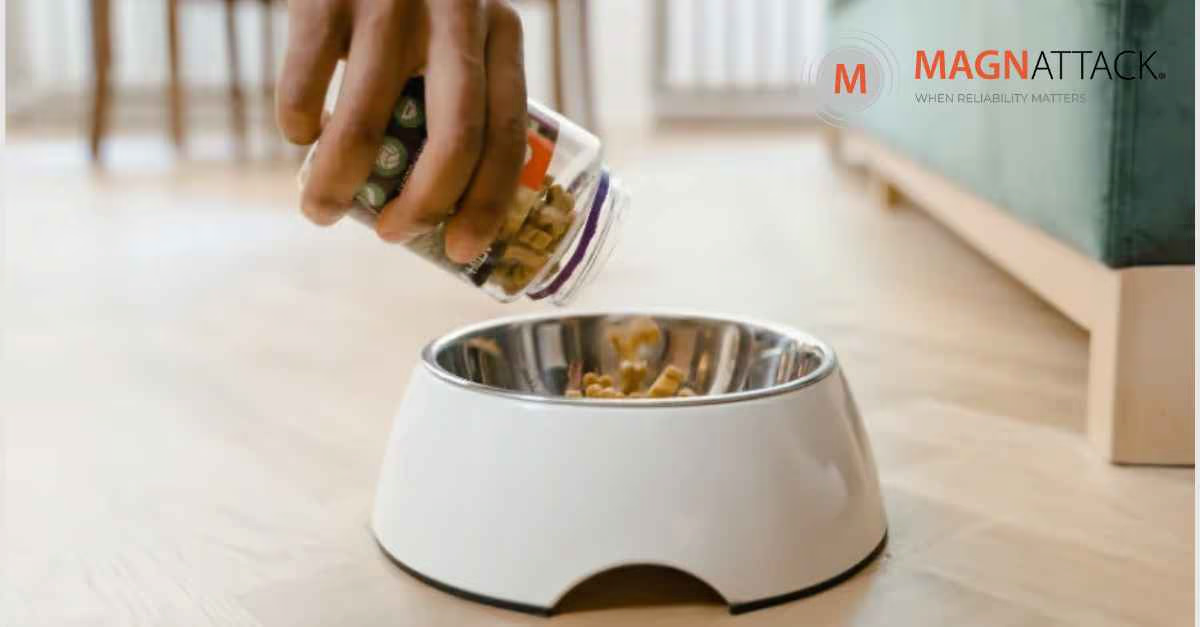 Technology
Technology
5+ MIN
12/08/2025
The Hidden Costs of Metal Contamination in Pet Food Processing (And How to Prevent It)
While the dangers of metal fragments in food products are well known, the true financial consequences of contamination are not always apparent until it's too late. From massive product recalls and reputational damage to regulatory fines and equipment failure, the hidden costs of metal contamination can cripple a pet food business. Fortunately, there are proven, cost-effective solutions to mitigate these risks—magnetic separation being one of the most powerful.
Let's explore the full scope of metal contamination in pet food processing, why it matters more than ever, and how preventive strategies can safeguard your operations and reputation in the long term.
Why Metal Contamination Is a Major Issue in Pet Food Processing
Pet food manufacturers operate in highly regulated environments with strict standards for hygiene, ingredient integrity, and traceability. Even minor lapses in contamination control can have serious repercussions.
Metal contamination typically occurs from three sources:
Processing Equipment Wear and Tear: As machinery components degrade over time, they can release tiny metal shards into the product stream, often going unnoticed until damage or contamination is discovered further downstream.
Raw Material Contamination: Ingredients may already be compromised before they enter your facility. If these materials are not adequately tested and filtered, they pose a direct contamination risk.
Operator Error or Maintenance Failures: Human oversight and inadequate maintenance can contribute significantly to contamination events, especially when production is scaled or rushed to meet deadlines.
In pet food production, metal contaminants are not only a physical hazard—they're also a financial and regulatory liability. Detection of even trace amounts of metal can trigger a cascade of consequences that reach far beyond the immediate scope of product loss.
Additionally, the risk of contamination extends beyond just the batch in question. It can affect adjacent product lines, raise questions about facility-wide hygiene standards, and lead to extensive investigations that can shut down operations for days or weeks.
The Hidden Costs of Contamination Incidents
Contamination incidents are far more than isolated quality control failures—they're events that can shake the foundation of a business.
Here's a breakdown of the most significant hidden costs:
Product Recalls and Brand Damage
A recall not only incurs direct costs like logistics, product disposal, and communication efforts—it also significantly damages brand trust. In a crowded market, pet owners are highly sensitive to safety issues, and negative press can lead to permanent customer loss.
The effects of a recall often ripple outward. Retailers may pull other products from shelves. Distributors may hesitate to place new orders. And consumer trust, once lost, is extremely difficult to rebuild. The long-term revenue losses from a single incident can exceed the immediate costs of recall logistics.
Lawsuits and Liability Risks
Contaminated pet food can cause serious harm to animals, potentially resulting in legal action from pet owners. Lawsuits may lead to costly settlements and additional regulatory scrutiny. Beyond financial penalties, the damage to your company's public image can be immeasurable.
Class action lawsuits, especially those amplified by media coverage, can linger for years. The legal fees alone can cripple smaller manufacturers, and settlements or judgments can force businesses to restructure or even shutter completely.
Equipment Damage and Downtime
Undetected metal fragments can harm processing machinery, leading to expensive repairs, unplanned downtime, and lost productivity. In high-output environments, even a few hours offline can result in massive financial setbacks.
Additionally, damaged machinery might not be caught immediately, which means ongoing inefficiencies, potential product quality issues, and cascading maintenance problems that compound over time. Predictive maintenance is critical, but so is source-level prevention.
Regulatory Fines and Compliance Penalties
Government and industry regulators take contamination incidents seriously. Failing inspections or breaching compliance can result in fines, suspension of licenses, or mandatory facility upgrades.
Compliance failures often lead to increased scrutiny, with agencies requiring regular audits, additional certifications, and costly infrastructure changes. In some markets, repeated non-compliance can even result in a ban on selling products.
Together, these hidden costs can snowball, creating long-term financial stress that compromises competitiveness and sustainability.
How Magnetic Separation Reduces Contamination Risks and Costs
Preventing contamination is always more cost-effective than managing the aftermath. One of the most efficient and scalable methods of protection is magnetic separation.
Magnetic separators work by removing ferrous and work-hardened stainless steel particles from the product stream before they reach downstream equipment or packaging. These systems are designed to capture even the smallest metal contaminants, reducing the likelihood of product recalls and equipment failure.
For pet food manufacturers, implementing magnetic separation offers several key benefits:
Increased Product Purity: Fewer contaminants mean higher product quality and consistency.
Compliance Assurance: Meet or exceed industry safety standards with minimal manual oversight.
Operational Efficiency: Minimize unplanned downtime due to equipment damage or by utilizing self-cleaning or easy-clean magnet designs.
Brand Protection: Proactively significantly reduce risks that could lead to recalls and customer backlash and complaints.
Furthermore, advanced magnetic separation technology is now available with features such as automated cleaning, data logging for compliance, and customizable designs to fit unique processing lines. This adaptability makes it easier than ever to implement without sacrificing throughput.
Best Practices for Contamination Prevention in Pet Food Processing
Beyond magnetic separation, pet food manufacturers should embrace a comprehensive contamination prevention strategy. Here are some best practices to consider:
Supplier Quality Control: Partner with trusted suppliers who provide certification and regular testing for raw materials. Implement incoming goods inspection protocols to catch contaminants early.
Routine Equipment Maintenance: Schedule regular inspections and servicing to prevent metal wear and fragment release. Include predictive maintenance tools to anticipate component failures.
Employee Training: Educate staff on contamination risks and procedures to ensure consistent handling and processing. Regular refreshers can ensure that safety practices remain at the forefront of people's minds.
Integrated Detection Systems: Use metal detectors and X-ray systems alongside magnetic separators for layered defense. Ensure these systems are calibrated and tested frequently.
Audit and Review: Conduct regular audits of your contamination control systems and processes to identify gaps and improvements. Use data to refine and optimize protocols over time.
Documentation and Traceability: Maintain detailed records of inspection, testing, and maintenance activities. Good documentation supports compliance and helps quickly identify root causes in the event of contamination.
Proactive contamination management strengthens food safety protocols, enhances brand integrity, and increases customer confidence.
Magnattack® Magnetic Separators for Pet Food Safety
At Magnattack, we specialize in magnetic separation systems engineered specifically for the demands of pet food processing. Our solutions are designed to help manufacturers control risks of potentially serious metal contamination events before they become costly problems.
With over 50 years of experience, our range of sanitary-grade magnetic separators includes:
Rapidclean® Drawer Magnets for dry ingredient and powder applications
Spherical Inline Pneumatic Transfer Magnets for pneumatic transfer lines
Mag-Ram® Self-Cleaning Magnets for continuous production environments and dry ingredients
Emulsion & Slurry Pipeline Separators and Pressure Pipeline Separators for wet emulsion, slurry and liquid products
Each unit is crafted to meet strict food safety standards, minimize risk, and support efficient operations without compromising throughput. Our team of experts provides full technical support, including site assessments, system customization, and ongoing compliance documentation.
Source: Magnattack
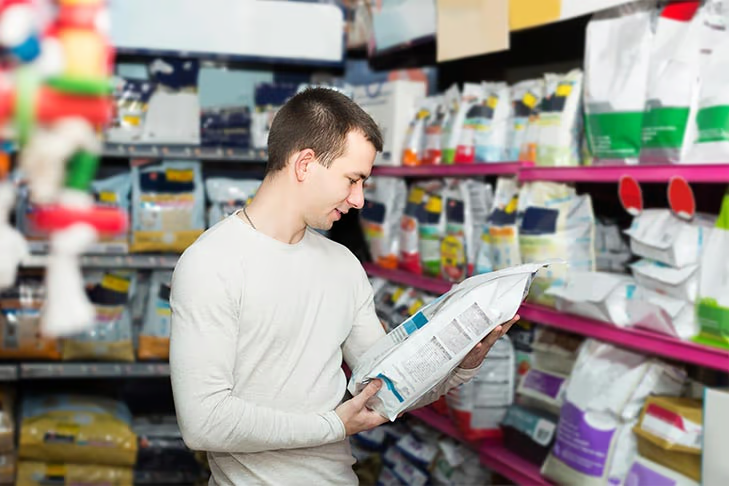 Sanity
Sanity
4+ MIN
11/08/2025
Does Dog Food Expire? How to Know If Your Pet’s Food Has Gone Bad
Expiration or sell-by dates can offer some guidance, but how and where you store your dog's food will have a greater effect on its shelf life, says Dr. Jennifer Larsen, DVM, Ph.D., DACVIM, Professor of Clinical Nutrition and Service Chief at the UC Davis Veterinary Medical Teaching Hospital.
'Some people can smell rancidity quite easily, and other people can't,' Dr. Larsen says. With their extremely sensitive noses, dogs are likely to detect spoilage before you do. 'If you're smelling that the food smells 'off,' then your pet is definitely noticing.'
How to Tell if Your Dog's Food Has Spoiled
Most dog food manufacturers will include an expiration date or a sell-by date on their packaging, but individual companies may have their own definitions or guidance for these terms. In general, expiration dates advise when food is no longer safe to eat, whereas terms like 'sell by' or 'best if used by' indicate when the unopened food might start to deteriorate in quality.
'Dogs and cats have much more sensitive noses than we do, and they have very strong opinions about the way that their food tastes,' Dr. Larsen says. If your dog seems reluctant to eat, sniffs their food for longer than usual, or just lacks excitement around mealtime, they could be detecting less appetizing flavors or odors due to spoilage.
If you find evidence of pest infestation, such as ants or rodent droppings, discard the food —even if it's well within the sell-by date. This food is neither safe nor palatable for your dog.
Storing Dry Dog Food
To preserve freshness, Dr. Larsen recommends keeping kibble in its original packaging, in a cool, dry area of your home where the temperature stays consistent.
'You would be amazed at how much effort goes into pet food packaging,' Dr. Larsen says, adding that it's one of the more expensive parts of commercial pet food production. Manufacturers engineer the bags to prevent fat migration and oxidation, the primary culprits in rancidity.
Even though pet food packaging isn't airtight or watertight, Dr. Larsen advises against transferring food from its original packaging into a separate storage container or zip-close bag.
'First of all, you're exposing all the food in the bottom of the bag to air and light —and air and light are definitely the enemies here,' Dr. Larsen explains. 'You're also potentially putting it into a secondary container that itself might impart odors and taste to dry foods that can adversely affect palatability.'
For added protection, Dr. Larsen says owners can place the entire bag of food —sealed, and in its original packaging— into a secondary container. Bags without a self-sealing feature should be folded down and secured with a bag clip.
'You're trying to minimize exposure to air, and you don't want as much airspace between the top of the kibble and the top of the bag,' she says.
Keeping Canned Dog Food Fresh
Canned food is sterilized as it's cooked in the can, so sealed food should be stable for a very long time. But the same storage considerations apply as with dry food —keep the cans in a cool, dry place in your home, away from heat and fluctuating temperatures. Check for dents before serving, especially along the seams on the top and bottom of the can. If the can is dented or ruptured, discard the food.
Once cans are open, they should be covered and refrigerated. 'Using a lid, or a plastic wrap, or something like that over the top, and then using that within five days or so is probably fine,' explains Dr. Larsen.
Risks of Eating Expired Dog Food
Dry dog food that is exposed to air over time undergoes a chemical process called lipid oxidation, which breaks down the fat molecules and causes rancidity. Diets high in unsaturated fat, such as those that contain fish oils, 'are going to be more sensitive to those oxidation damages that are going to happen just from exposure to air,' Dr. Larsen says.
Most commercial pet foods are formulated with enough nutrient overages that it's unlikely a dog will experience nutritional deficiencies from eating stale food, Dr. Larsen says. But when fat oxidation occurs, essential fatty acids are damaged and can cause gastrointestinal issues.
'[Oxidation products] definitely upset the bacteria that live in our gastrointestinal tract, and some of those oxidation products that happen are considered toxic,' Dr. Larsen says. 'So not only do they not taste good, they can cause diarrhea and things like that.'
Beyond oxidation, very old or stale food may have diminished nutritional value, such as vitamin loss. 'You could theoretically see some deficiencies,' Dr. Larsen says, 'but I would expect that, unless it was a dire circumstance, the pet would stop eating the food before it became quite spoiled.'
By Lindsey Dobruck
Source: American Kennel Club
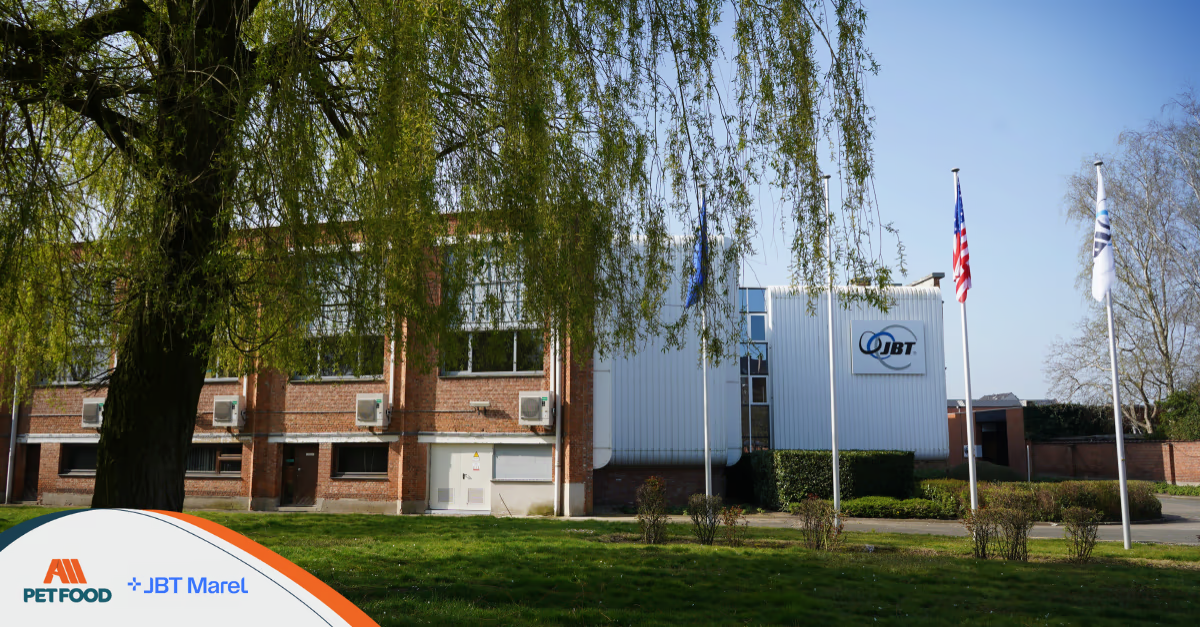 Market Information
Market Information
2+ MIN
08/08/2025
JBT Marel to Host Pet Food Open Day & Seminar in Belgium
On Tuesday, September 16, in Sint-Niklaas, Belgium, JBT Marel will welcome pet food processors from across the region for an exclusive Pet Food Customer Open Day & Seminar. This free, RSVP-only event offers a unique opportunity to explore the latest technologies, trends, and best practices in the pet food industry.
The day will begin at Hotel Serwir with presentations from industry leaders, including Waldner on filling and closing pouches, Clevertech on automation and end-of-line solutions, and JBT Marel on container sterilization, retort systems, hydro processes, and sustainability in production. Attendees will also benefit from a dedicated Q&A session and one-on-one consultations with specialists to address specific challenges and performance goals.
After a networking lunch, guests will be transported to the JBT FoodTech facility for live demonstrations and a guided tour of an end-to-end pet food processing line.
Event Schedule (CEST – GMT+2):
9:00 a.m. – Registration (Hotel Serwir, Kon. Astridlaan 57, 9100 Sint-Niklaas)
9:15 a.m. – Welcome by Sandra Driver, JBT Marel EMENA Region Sales Director
9:30 a.m. – Session 1: Waldner – Filling and Closing Pouches
10:15 a.m. – Session 2: Clevertech – Automation & End of Line
11:00 a.m. – Coffee Break
11:20 a.m. – Session 3: JBT Marel – Container Sterilization/Retort/Hydro/Sustainability
12:05 p.m. – Q&A Session
12:30 p.m. – Lunch Break
1:30 p.m. – Transfer to JBT FoodTech Facility
2:00 p.m. – Facility Tour & Machinery Demonstrations
4:00 p.m. – End of Day
About JBT in the Pet Food Market
JBT stands out as a trusted, all-in-one partner in pet food processing. Leveraging more than a century of expertise in food technology, JBT supports producers across the full spectrum of pet food—from wet and dry formats to fresh, raw, canned, frozen, and even plant-based varieties.
Their comprehensive approach covers every stage of production, including preparation, extrusion, steaming, cooking, filling and closing containers, in‑container sterilization (for cans, pouches, trays), high‑pressure processing (HPP), as well as chilling and freezing—ensuring safety without sacrificing freshness, nutrition, or texture.
JBT's pet food systems are engineered for reliability and adaptability, offering hygienic design, operational uptime, and customizable configurations that help lower lifetime ownership costs and optimize production. Additionally, their global R&D centers enable customers to test recipes, fine-tune processes, and gain technical insights—making innovation practical and effective.
RSVP & More Information
Secure your place at this exclusive event here: https://cloud.go.marel.com/pet-food-open-day
Source: All Pet Food
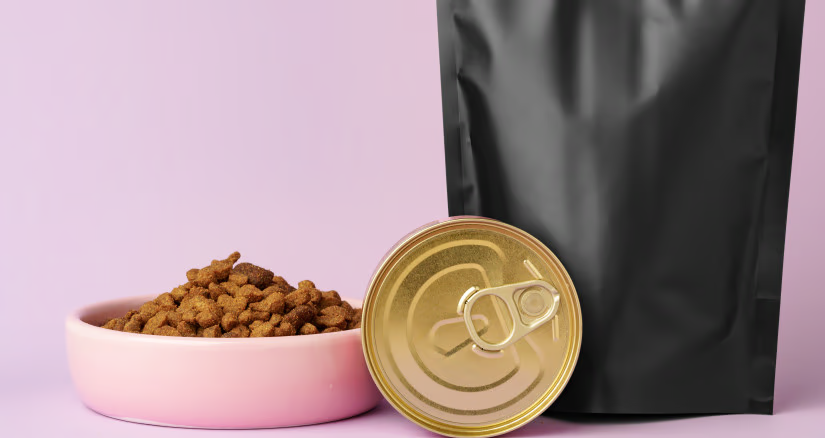 Labels
Labels
4+ MIN
08/08/2025
White Label vs. Private Label: What’s the Difference—and Where’s the Opportunity?
White labeling involves putting your brand's logo and messaging on an existing, typically generic, product—a formula that multiple retailers or brands can purchase and rebrand. It's a fast, low-cost solution, but it offers little in the way of true brand differentiation and innovation. Private labeling, by contrast, means the retailer or brand owns the unique formula created specifically for them (and sometimes even by them), with the ability to select ingredients, and control over formulation, claims, and design. Think of white labeling as renting a product versus private labeling as owning your own custom creation. In other words, renting an apartment versus building your dream home.
Private labeling can also commonly be referred to as 'store brand' or 'house brand.' However, this approach is not limited to retailers. Similarly, the same concept utilized by companies like Petco or Chewy can be useful to independent pet brands by allowing them to leverage customization and brand differences without the bottom-line burden of owning their own manufacturing facilities. This is also referred to as working with a co-manufacturer, or a third party that produces the product, but the brand or retailer retains ownership of the unique formulation, design, claims, and other aspects of the product.
In today's market, where consumers are seeking authenticity, transparency, and premium quality, private labeling has emerged as the more strategic and profitable choice.
Private Label Taking Over?
The latest industry data confirms the shift to private labeling. According to NielsenIQ, premium pet food continued to show double-digit unit growth through mid-2024, even as broader pet food demand stabilized. Private label now accounts for approximately 17% of both dollar and unit share in the pet category, with store-brand offerings contributing nearly 3.5% of total dollar sales. This aligns with broader consumer trends across categories—data from the Private Label Manufacturers Association (PLMA) shows private label dollar sales grew 3.9% in 2024, outpacing national brands. In fact, across all sectors, private label now represents 19.5% of total dollar share, a 3% increase from the previous year. This growth is driven not by low-cost generics but by premium, wellness-focused store brands that meet modern consumer expectations for health, sustainability, and ingredient transparency, and the pet industry is uniquely positioned to benefit from this trend. In the U.S., pet spending reached $151.9 billion in 2024 and is projected to hit $157 billion in 2025, with pet parents increasingly treating their pets as members of the family. Interestingly, over 80% of consumers view private label quality as equal to or better than national brands. In the pet space, that opens the door for truly differentiated products, from gut health supplements and novel proteins to functional treats and sustainable packaging that resonate with today's wellness-driven pet parent.
Moreover, private label products offer substantial financial upside. On average, they yield 25% to 30% higher gross margins than national brands (or 'name brands') due to lower marketing and distribution costs and stronger customer retention. Some niche pet brands report even higher margins, especially when their products are aligned with emerging trends or serve an unmet need.
This is exactly where BSM Partners delivers competitive advantages. As the largest full-service pet industry consulting firm in North America, our team of veterinary nutritionists, PhD food scientists and nutritionists, regulatory experts, and product developers helps brands build exclusive, science-backed formulations that go far beyond basic private labeling. From functional treats to next-generation supplements, we ensure that each product not only meets consumers' needs but also aligns with the latest science and market trends.
We also handle the regulatory side, navigating guidelines set by the Association of American Feed Control Officials (AAFCO), substantiating claims, and ensuring products are both legally compliant and marketing-ready. Our innovation pipeline helps brands stay ahead of the curve, while our extensive network of trusted co-manufacturers allows for rapid scaling from prototype to launch.
While white labeling may offer a fast route to market, it may not secure long-term customer loyalty or meaningful differentiation. Private labeling, especially when grounded in innovation and scientific credibility, builds lasting brand equity. It empowers pet brands and retailers to deliver premium, exclusive products that reflect their values and meet rising consumer expectations for transparency, functionality, and quality. With the pet category showing no signs of slowing down and private-label sales and trust on the rise, now is the time to invest in a private-label strategy that sets a brand apart.
With BSM Partners as your innovation partner, your private label becomes a competitive advantage built on science, expertise, and strategic execution.
About the Author
Dr. Katy Miller works as the Director of Veterinary Services at BSM Partners. She earned her veterinary degree at Ross University and completed her clinical year at Louisiana State University. She previously served for 11 years as the Director of Dog and Cat Health and Nutrition for Mud Bay where she earned multiple certifications and specialized in pet food nutrition, prior to which she practiced general and emergency medicine for seven years. She is also a competitive three-day eventer, licensed falconer, and claims only two (Golden and Mini Doxie) of their nine dogs.
By Dr. Katy Miller
Source: BSM Partners
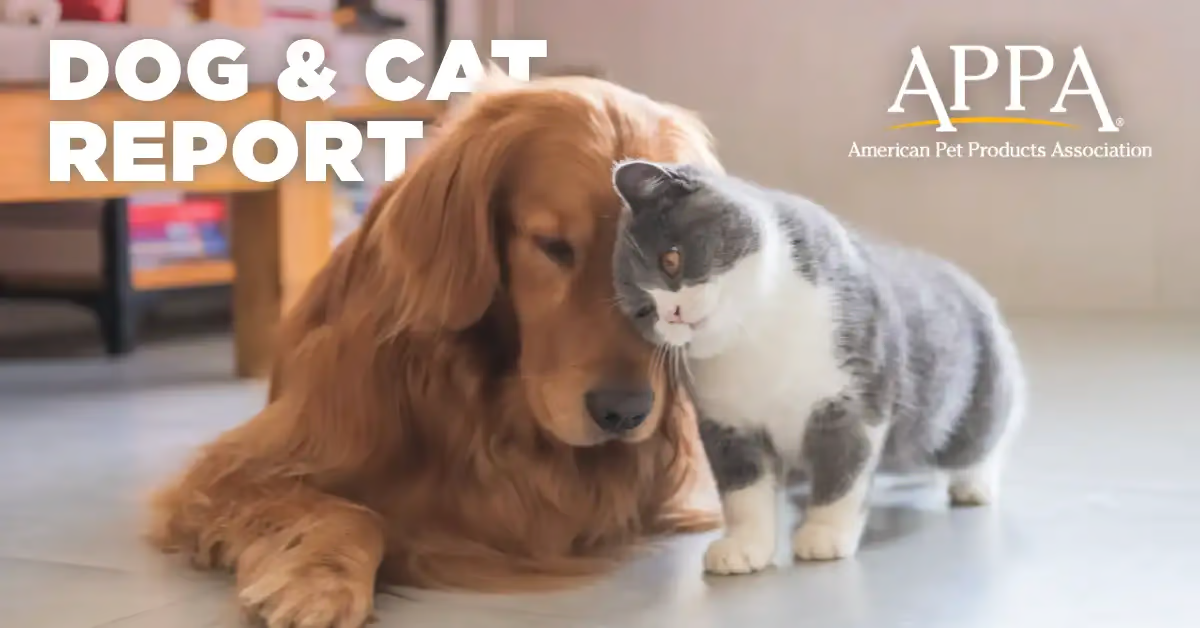 Market Information
Market Information
5+ MIN
07/08/2025
The American Pet Products Association (APPA) Releases 2025 Dog & Cat Report, Revealing a New Era of Pet Ownership
The American Pet Products Association (APPA) announced today the release of its 2025 Dog & Cat Report, its second pet owner insights report this year. The report features the latest research and insights from APPA's National Pet Owners Survey on the two largest segments of the pet industry, dog and cat owners, providing more than 200 pages of comprehensive analysis and visuals on owner shopping trends, sentiment, demographics and behaviors. The data shows a record-breaking rise in cat ownership, the evolving humanization of pets, a deepening human-animal bond relationship with pets, and a heightened focus on proactive pet wellness.
'Our latest Dog & Cat Report confirms what many in the industry have sensed –pet ownership continues to evolve in meaningful ways, with dogs and cats more integrated into our lives than ever before,' said APPA President and CEO Peter Scott. 'From prioritizing pet nutrition to the rise of multi-cat households, today's pet owners are redefining what it means to care for a companion animal. These insights reflect not only the powerful bond between humans and their pets, but a roadmap for where the pet industry is headed next.'
Key trends revealed in the report include:
Cat Ownership Trends: The Year of the Cat
Cat ownership is on the rise. A 23% increase in ownership in 2024, more multi-cat homes, and a growing appetite for quality time with their cats show today's owners are redefining what it means to be a 'cat person'.
Forty-nine million (49) US households own a cat, up from 40 million in 2023.
Cat owners are expanding their households to include more than one cat.
- Single-cat households decreased from 64% in 2018 to 58% in 2024, a 9% decrease.
Meanwhile, households with two cats increased by 8% from 2018. Most significantly, households with three or more cats increased by 36% from 2018.
Cat owners are strengthening the human-feline bond by purchasing products that support training and encourage quality time outside the home.
- More owners train their cats. Forty-eight percent (48%) use some type of training method with their cat, a 41% increase from 2018.
- More cat owners purchase leashes, harnesses and collars. Thirty-two percent (32%) have a leash, a 52% increase from 2018. Twenty-two percent (22%) own a harness, and 27% own a non-flea collar, a 69% and 50% increase from 2018, respectively.
From pet parties to themed merchandise, celebrating cats has become a core component of modern cat ownership.
The percentage of owners hosting holiday/birthday parties for their cats in 2024 (21%) increased by 250% from 2018.
Thirty-four percent of cat owners purchased pet-themed merchandise, an 89% increase from 2018.
Dog Ownership Trends: The Rise of the Lifestyle Companion
Today's dog owners prioritize shared experiences and deeper connections with their dogs, integrating them into active lifestyles, everyday routines and travel.
Dog owners increasingly incorporate their pets into daily routines that support healthy, active lifestyles. At least once a week, 53% of owners take their dogs on foot for daily errands, a 6% increase from 2023.
Owners continue to include dogs in their travel plans.
Of the owners who travel with their dogs, a growing number (74%) have traveled by plane in the last year, up from 68% in 2023, while 87% have traveled by car, a trend that has been consistent since 2023.
A majority of dog owners want dog-friendly workplaces. Forty-nine percent (49%) say they are very/somewhat likely to take their pet to the office if permitted.
Pet Food Trends: Transforming Pet Nutrition
Dog and cat owners are taking a wellness-focused approach to pet nutrition. Over the past year, owners have made significant shifts in what they feed their pets, favoring premium diets and functional add-ons.
After declining in 2023, premium pet food purchases regained momentum in 2024 while basic food purchases declined.
- Forty-one percent (41%) of dog owners and 38% of cat owners purchased premium food, a 5% and 9% increase from 2023, respectively.
- Twenty-six percent (26%) of dog owners and 38% of cat owners purchased basic food, a 7% decrease for both from 2023.
Mixers/toppers have seen tremendous growth over the last six years. Sixteen percent of dog owners and 19% of cat owners purchased mixers/toppers in 2024, increasing by 129% and 138% from 2018, respectively.
Functional diets like pre- and probiotics saw significant growth in 2024. Thirteen percent (13%) of dog owners and 12% of cat owners purchased pre- and probiotic diets, an 18% and 9% decrease from 2023, respectively.
Vitamin and Supplement Trends: Proactive Pet Wellness
Proactive pet wellness remains a top priority for dog and cat owners, fueling growing demand year-over-year for vitamins and supplements that support their pets' well-being.
Vitamin and supplement use continues to grow among dog and cat owners.
- Fifty-three percent (53%) of dog owners give their dogs vitamins/supplements, a 6% increase from 2023. A six-year look back shows a 56% increase in vitamin/supplement purchases from 2018.
- Thirty-four percent (34%) of cat owners give their cats vitamins/supplements, also a 6% increase from 2023. A six-year look back shows a 70% increase in vitamin/supplement purchases from 2018.
Trends in the most popular types of vitamins and supplements vary among dog and cat owners.
In 2024, joint health/mobility, multivitamin, and skin/coat/nail supplements were the most popular types among dog owners.
Among cat owners, multi-vitamins, followed by pre- and probiotic and digestion supplements, were the most popular types.
"This year's data paints a clear picture of shifting behaviors and priorities among pet owners, especially in the areas of wellness, lifestyle integration, and premium product adoption,' said Vice President of Research and Insights, Ingrid Chu. 'We've seen double and even triple-digit increases in categories like cat harnesses, pet birthdays, themed merchandise, and nutrition-enhancing food toppers – all evidence that consumers are embracing more personalized, intentional care for their pets.'
The American Pet Products Association is a membership organization serving the pet industry through services and programs designed to help its members prosper. Since 1988, APPA has published the APPA National Pet Owners Survey, the premier resource of its kind, providing in-depth data on consumer behavior. APPA's research and insights monitor consumer habits, identify short- and long-term trends and discover new opportunities in pet ownership, pet product and service consumption published across four quarterly reports, including State of the Industry, Dog & Cat, Fish & Reptiles and Horse, Birds & Small Animals.
For more information about APPA's available pet industry data, visit www.americanpetproducts.org/insights. Complementary media access is available upon request.
Source: American Pet Products Association (APPA)
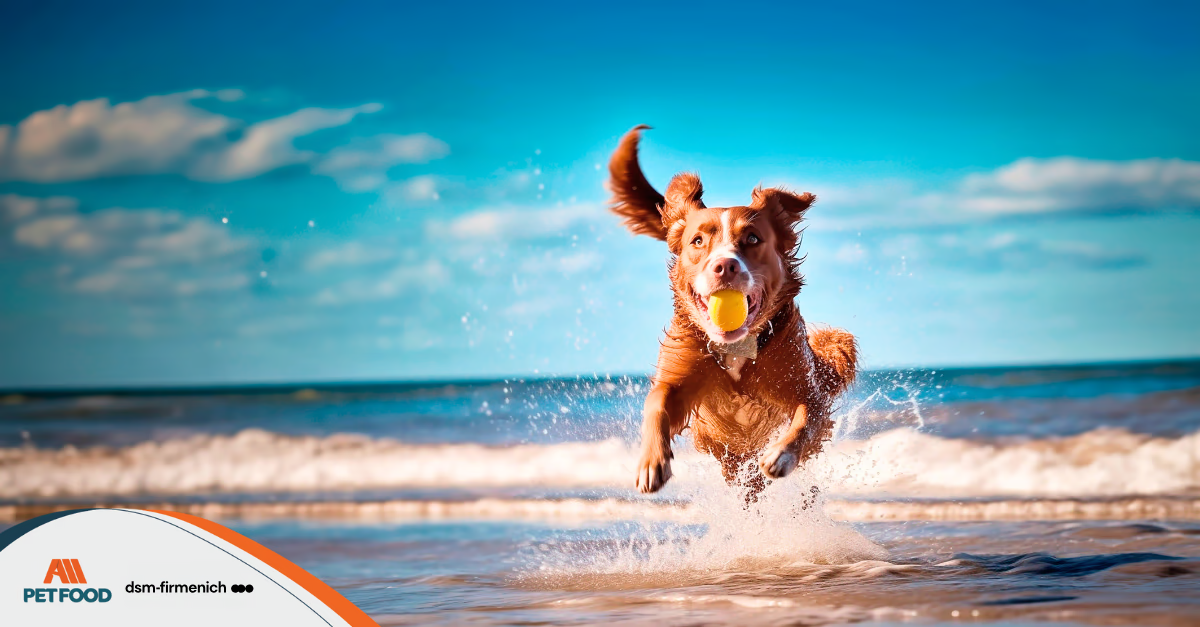 Vegetable Origin
Vegetable Origin
5+ MIN
06/08/2025
Keeping the Doctor Away With Algal Omega-3s Each Day
Pet insurance data reveals a consistent pattern: the same health conditions appear year after year as the most common reasons pet parents file claims.1 From skin allergies and ear infections to joint problems and anxiety, these recurring issues highlight both the challenges pets and their owners face, and the opportunities for proactive nutrition to make a meaningful difference.
While illness throughout a pet's life may seem inevitable, emerging science suggests that targeted nutritional intervention—particularly through omega-3 fatty acids eicosapentaenoic acid (EPA) and docosahexaenoic acid (DHA)—can play a significant role in supporting pet health and potentially reducing the frequency and severity of these common claims.2
For manufacturers, this presents a compelling opportunity. Formulating with clinically backed omega-3s not only delivers measurable health benefits but also addresses the specific concerns that drive pet parents to seek veterinary care most often.
When inflammation drives the veterinary visit
A closer examination of insurance data reveals something striking: the majority of frequent claims share a common denominator—inflammatory processes. From the persistent scratching of allergic dermatitis to the joint stiffness of arthritis, inflammation underlies the discomfort that prompts millions of veterinary consultations annually.3,4
This connection transforms omega-3 fatty acids from simple nutrients into strategic interventions. Research demonstrates that EPA and DHA supplementation significantly improved the Omega-3 Index in dogs while reducing overall pain scores. Quality of life scores also improved, indicating that these nutrients can help tackle the underlying inflammatory cascade through their anti-inflammatory properties.6
Addressing the needs of an aging pet population
As veterinary medicine enables pets to live longer, age-related joint deterioration has become a defining health challenge. The dramatic 49% increase in osteoarthritis claims reflects this demographic shift.2 Clinical studies show that omega-3s can help reduce the severity of symptoms associated with arthritis in pets by inhibiting the production of inflammatory compounds that contribute to joint pain and swelling.6
Skin health is under the surface
When skin allergies consistently rank as a top insurance claim, the welfare implications are substantial.1 A systematic review of EPA and DHA supplementation found therapeutic benefits in canine allergic dermatitis, with omega-3 fatty acids helping to manage several inflammatory skin disorders through their immunomodulatory and anti-inflammatory effects.7
Systematic immune support
The potential of omega-3s becomes more apparent when examining their role in immune regulation. Research shows that increased circulating levels of EPA and DHA result in decreased expression of inflammatory markers.7 Additionally, they serve as precursors to potent anti-inflammatory and pro-resolving mediators, enhancing their immunomodulatory effects.7 This systemic immune support creates a foundation of resilience that may help pets better withstand typical health challenges—from recurring ear infections to stress-related conditions.
Cognitive wellness and emotional balance
Beyond physical health, DHA's concentrated presence in neural tissue positions it as a key player in brain function and cognitive development. Studies show that DHA may improve cognitive function in older dogs, while also supporting proper brain and eye development in puppies.7 For pets experiencing anxiety, cognitive support through optimal brain nutrition offers a foundational approach to behavioral wellness.
This neurological resilience becomes particularly valuable as stress-related behaviors and cognitive decline represent growing concerns for pet families.
A new paradigm: proactive nutrition for sustainable pet health
The persistence of specific pet health issues suggests an opportunity to transform pet healthcare from reactive treatment to proactive wellness. This shift toward preventive, holistic pet health also aligns with another key trend among pet parents: sustainability. Pet parents tend to be more eco-conscious than non-pet owners8 and 70% say they are actively seeking ways to reduce their environmental footprint.8 This opens up a huge opportunity for pet food manufacturers to innovate with algal omega-3s, giving pet parents integrated solutions that address individual pet wellbeing and provide planetary care.
Unlike traditional fish-derived omega-3s, algal sources go directly to the original producers—marine microalgae—delivering superior nutritional density while protecting ocean ecosystems. dsm-firmenich's algal omega-3 solutions exemplify this approach: DHAgold™ delivers clinically-proven cognitive benefits, while Veramaris® Pets provides 60% EPA and DHA content—more than double the potency of conventional fish oils. Both ingredients enable manufacturers to create products that address the root causes of common insurance claims while satisfying growing demands for responsible sourcing.
This convergence of proactive health management and ecological responsibility represents the future of pet nutrition. For manufacturers, algal omega-3s offer the compelling combination of clinical efficacy, consumer appeal, and environmental integrity that defines next-generation pet food formulation. In an industry where pets are family members deserving optimal care, this integrated approach delivers measurable health outcomes while supporting the sustainable practices that modern pet families expect.
For more information about dsm-firmenich's sustainable omega-3 solutions, visit https://www.dsmfirmenich.com/en/businesses/taste-texture-health/markets-products/pets/omega-3-solutions.html
To get in touch, contact:
Felipe Cabanne,
Pet Food Account Manager – South America
E: [email protected]
M: +55 16 99643-9143
Source: DSM Firmenich
References
1 Nationwide. "Skin allergies, gastrointestinal disease among most common conditions that prompt veterinary visits." Nationwide. September 12, 2024. [Accessed: July 2, 2025] https://news.nationwide.com/most-common-conditions-that-prompt-veterinary-visits-2024/
2 "The Effects of Omega-3 Supplementation on the Omega-3 Index and Quality of Life and Pain Scores in Dogs," PMC, accessed July 2, 2025. https://pmc.ncbi.nlm.nih.gov/articles/PMC11545626/
3 Yasutomo Imai, K. Yasuda, M. Nagai, Minori Kusakabe, M. Kubo, K. Nakanishi and K. Yamanishi. "IL-33-induced atopic dermatitis-like inflammation in mice is mediated by group 2 innate lymphoid cells in concert with basophils.." The Journal of investigative dermatology (2019). https://doi.org/10.1016/j.jid.2019.04.016.
4 Kutty Selva Nandakumar, Qinghua Fang, Isabella Wingbro Ågren and Zoe Fuwen Bejmo. "Aberrant Activation of Immune and Non-Immune Cells Contributes to Joint Inflammation and Bone Degradation in Rheumatoid Arthritis." International Journal of Molecular Sciences, 24 (2023). https://doi.org/10.3390/ijms242115883.
5 Carlisle, Carolina, Brandon T. Metzger, Nathan L. Tintle, Kristine Polley, Kristina H. Jackson, Sara Le Brun‑Blashka, Jody Griffiths, and William S. Harris. 'The Effects of Omega‑3 Supplementation on the Omega‑3 Index and Quality of Life and Pain Scores in Dogs.' Animals 14, no. 21 (October 29, 2024): 3108. doi:10.3390/ani14213108
6 Magalhães, Tomás Rodrigues, Ana Luísa Lourenço, Hugo Gregório, and Felisbina Luísa Queiroga. "Therapeutic Effect of EPA/DHA Supplementation in Neoplastic and Non-neoplastic Companion Animal Diseases: A Systematic Review." Animals 11, no. 7 (2021): 1997. doi:10.3390/ani11071997.
7 American Kennel Club. "Fish Oil for Dogs: What to Know." American Kennel Club. June 14, 2024. [Accessed: July 2, 2025] https://www.akc.org/expert-advice/nutrition/fish-oil-for-dogs/
8 Euromonitor. 'Sustainable Ingredients in Pet Care', 2022. https://www.euromonitor.com/article/sustainable-ingredients-in-pet-care
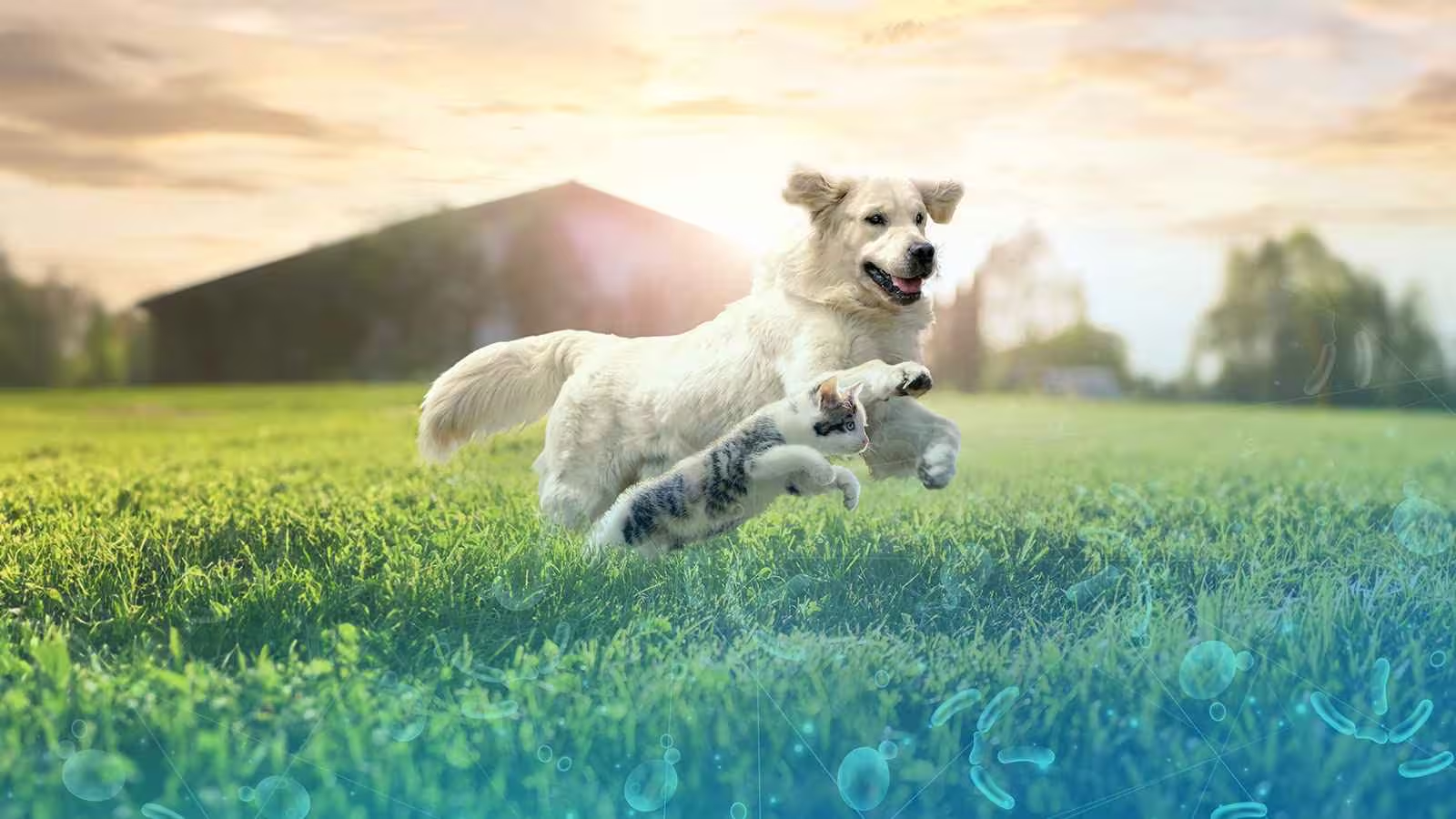 Other microingredients
Other microingredients
5+ MIN
05/08/2025
The Gut-Skin Axis: A Postbiotic Strategy
The Gut Barrier
The gut barrier relies on specialised epithelial cells, the generation of protective mucus, and tight junctions to:
Facilitate nutrient absorption and digestion,
Regulate immune responses,
Support microbial balance within the intestine,
Protect the body from any ingested threats.
The three gut barrier layers (Figure 1): the microbiological barrier (microbiome), the chemical barrier (mucous layer), and the physical barrier (intestinal epithelial cells) require continuous regeneration to maintain their integrity against constant pressures. Factors like poor nutrition, infection, or illness can compromise gut barrier integrity, leading to increased 'intestinal permeability,' which can cause inflammation, food allergies, nutrient malabsorption, a compromised immune system, and disease (Wells et al., 2017).
Figure 1. Schematic representation of the main components of the gut barrier, adapted from Vancamelbeke & Vermeire, 2017 and Samaxmi et al., 2023.
The Skin Barrier
Like the gut barrier, the skin is also a complex organ with multiple layers, each serving a unique function. Its microbiota is a dynamic community of trillions of bacteria, yeasts, fungi, viruses, and other microorganisms residing within the epidermis, dermis, and associated glands and follicles. This community's balance evolves constantly, influenced by the host and environment. Research shows a close relationship between the skin's physical, immunological, and biological properties and its microflora. Several skin conditions, from dry and aging skin to inflammatory issues like atopic dermatitis, psoriasis, and acne, are linked to alterations in the cutaneous microbial ecosystem (Elias & Choi, 2005).
Like the gut, the skin uses various defense mechanisms to protect against infection, including physical integrity and regulation of pH. Healthy skin typically has a slightly acidic surface pH, creating an unfavourable environment for pathogenic bacteria (Chikakane & Takahashi, 1995). The skin and its microbiome produce antimicrobial peptides (AMPs) that target skin pathogens. Antibiotics are commonly used for skin conditions but can disrupt the skin's microflora and the gut if taken orally (Gallo & Nakatsuji, 2011). The skin's innate immune system collaborates with the cutaneous microbiota to act as a barrier against pathogens. It differentiates between probiotics and pathogens, triggering pathways to reduce inflammation and stimulate the production of anti-inflammatory cytokines and chemokines, as well as natural AMPs (Wang et al., 2012; Lew & Liong, 2013).
Traumatic or surgical wounds compromise skin integrity and function. Efficient skin care is essential to restore the skin to its physiological state and limit secondary infections. Factors like metabolic conditions, temperature, stress, and nutrition impact skin health. The wound healing process, conserved across vertebrates, aims to produce tissue at the injury site that resembles existing tissue and protects the body. There are three major stages of wound healing:
Figure 2. The three stages of wound healing from a penetrative skin wound.
Microbial Interventions for Skin
Microbials are increasingly utilised in human skin health products to modulate cutaneous microflora, support lipid barrier function, and enhance the immune system to maintain homeostasis (Cinque et al., 2011). In addition to topical applications, the beneficial effects of orally administered bacterial and/or yeast-based solutions have also been demonstrated, likely mediated through the gut–skin axis: a bidirectional communication pathway linking gastrointestinal and dermal health.
Interestingly, recently scientists have been able to prove that microbes don't necessarily need to be alive to be effective (Kataria et al., 2009).
The Gut-Skin Axis in Action
The gut-skin axis reflects the relationship between the gut and skin, often reflecting the integrity and health of each barrier system. It is a bidirectional interaction, controlled by the immune system and influenced by gut microbiome metabolites. The postbiotic yeast YANG, made of three specifically selected yeast fractions with synergistic properties, has been used as an in-feed treatment for skin health and wound healing in a zebrafish model. Macroscopic evaluation of wound healing closure was significantly more advanced at 16 days post-wound (dpw) in the YANG-fed group compared to the control group, meaning YANG promoted a quicker onset of wound closure and faster tissue rebuilding.
Figure 3. Macroscopic wound closure evaluation of a 3mm biopsy made on zebrafish fed a control diet, or YANG at 1.5kg/t. WCc; wound closure cumulative as a percentage of the initial wound. WCd; wound closure daily as a percentage of the previous day's closure.
The quality of the healing process was also evaluated at 4 dpw by analysing the granulation of tissue, revealing significantly enhanced thickness and transversal surface area for the YANG group. This indicates an earlier entry into the proliferative phase of wound healing for the YANG-fed group as a result of a faster inflammatory phase resolution.
Figure 4. Microscopic wound closure evaluation of a 3mm biopsy made on zebrafish fed a control diet, or YANG at 1.5kg/t, evaluating the degree of wound granulation.
These findings indicate that oral supplementation with YANG can enhance skin health by accelerating wound healing and closure, primarily through the strengthening of natural defenses. Enhanced total microbial population and decreased pH, as well as increased levels of Bifidobacterium species and Lactobacillus species have also been demonstrated as results of YANG oral supplementation in previous studies in dogs, supporting the two-way interaction theory for the gut-skin axis.
Implications for pet health
The findings from zebrafish models offer valuable insights for companion animal care, particularly regarding the integrity of the gut and skin barriers. In pets, disruptions in the balance of gut and skin microbiomes are increasingly associated with chronic inflammation, weakened immunity, and conditions, such as atopic dermatitis, gastrointestinal sensitivities, and poor wound healing.
The demonstrated benefits of YANG highlight the potential of targeted microbial interventions. It would not only support gut health—by enhancing microbial diversity and immune markers like faecal IgA—but also promote faster and more effective skin repair. This dual action reinforces the concept of the gut-skin axis as a two-way communication system, where improving gut health can directly benefit skin resilience and recovery.
For pets prone to digestive disorders or chronic skin conditions, the inclusion of specific and proven microbial solutions into their diet offers a holistic approach to support their health and well-being. As the pet food industry continues to evolve toward functional nutrition, leveraging the gut-skin axis opens new opportunities for innovation in dietary formulations.
What is LALPROBIOME?
LALPROBIOME is Lallemand Animal Nutrition's platform of innovative microbial solutions that leverage the natural power of yeast and bacteria to support pet health and well-being. Lallemand's decades of yeast and bacteria strain selection, development, and application in human and animal nutrition, enables LALPROBIOME to offer a broad range of microbial solutions to meet the needs of pets and their owners today and for the future. From digestive care to immune support, antioxidant optimisation to cognitive function, LALPROBIOME pet solutions can help you elevate and differentiate your brands with novel ingredients that support unique and specific benefits.
For more information about LALPROBIOME pet solutions visit https://lalprobiome.lallemandanimalnutrition.com/en/rest-of-the-world
Connect with us at [email protected]
By Lallemand Animal Nutriton
Source: All Pet Food Magazine
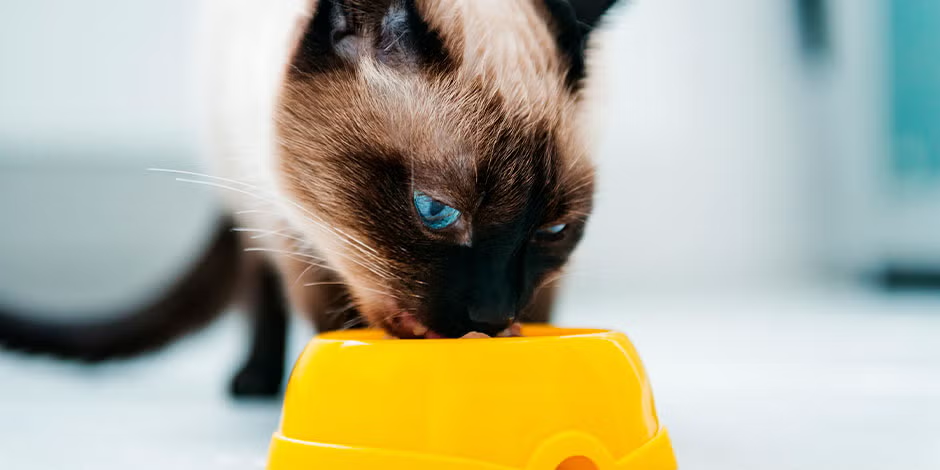 Preservatives
Preservatives
3+ MIN
04/08/2025
Additives
The term 'additive' can be applied to a range of ingredients that manufacturers add to the basic ingredients that are at the heart of pet food. These minor ingredients include mainly essential nutrients such as vitamins and minerals, but also flavours, colours and agents to prevent harmful spoilage of the pet food due to fats going rancid or through bacterial contamination. Vitamins and minerals are presented in the factsheet Nutritional needs of Cats and Dogs.
Preservatives
Pet food safety is of critical importance. Preservatives may be added, largely depending upon the type of pet food product and processing, to ensure that food products remain nutritious and safe for consumption throughout their shelf life. The food must be protected from bacterial or mould contamination and spoilage, further it must be protected from degradation and the loss of nutrients during storage. The method of preservation used depends on the type of food because the way of processing also contributes to the food integrity and shelf life:
Dry pet food: The manufacturing process kills microbes and the low moisture content helps to inhibit the growth of most organisms.
Moist pet food: The heat applied in cooking of canned or pouch pet food kill microbes and the packaging excludes air, protecting the food.
Chilled pet food: Processed chilled pet food has undergone a controlled thermal process and this, together with refrigeration during storage helps suppress spoilage.
Semi-moist pet food: This generally has a low pH and contain humectants that bind water to the product, making it less available for use by invading organisms.
Antioxidants
Antioxidants are used to protect pet food from deterioration due to oxidation. All pet food has some fat and/or oil content and these should be stabilised by including antioxidants to prevent fats from reacting with oxygen in the air (oxidising) and food becoming rancid which leads to losses in nutritional quality. The inclusion of antioxidants helps to maintain wholesomeness and quality of the food. Antioxidants are incorporated into dry and semi-moist pet food to protect them from exposure to oxygen after processing.
Antioxidant preservatives that might be included in dry pet food include: a variety of herbal or plant extracts including: vitamin E (tocopherols), vitamin C (ascorbates) or manmade antioxidants, which have been used in various human food for many years.
Colouring agents
Colouring agents may be added to pet food to enhance the appearance of the food. These include a range of naturally occurring food colours, food dyes or mineral based colours.
Emulsifiers and stabilisers
Emulsifiers help keeping the fat in the food and prevent the water from separating. Gums and lecithin are used to prevent separation of ingredients and to create the gravy or gel in canned, pouch and other moist pet food. Food gums include seaweed extracts and seed gums such as guar gum (from the guar plant).
Flavours
Flavours are used to enhance the palatability in some pet food and to provide product variation. Much of the appeal of prepared pet food to the dog or cat stems from the choice of raw materials, such as fish, meat, vegetables or cereals. As with food for humans, the cooking process often increases the palatability of pet food. Some flavours may be added to some pet food and these can be natural flavours such as extracts from fish or poultry, or agents designed to mirror natural flavours.
Gut flora stabilisers
Gut flora stabilisers such as live micro-organisms can be added to pet food and have a positive effect on the gut microbiota. These live micro-organisms, classified as zootechnical feed additives by the European authorities and commonly known as 'probiotics', can be a good alternative to reduce the use of antibiotics in animals and more specifically in pets.
Download the factsheet.
Source: FEDIAF
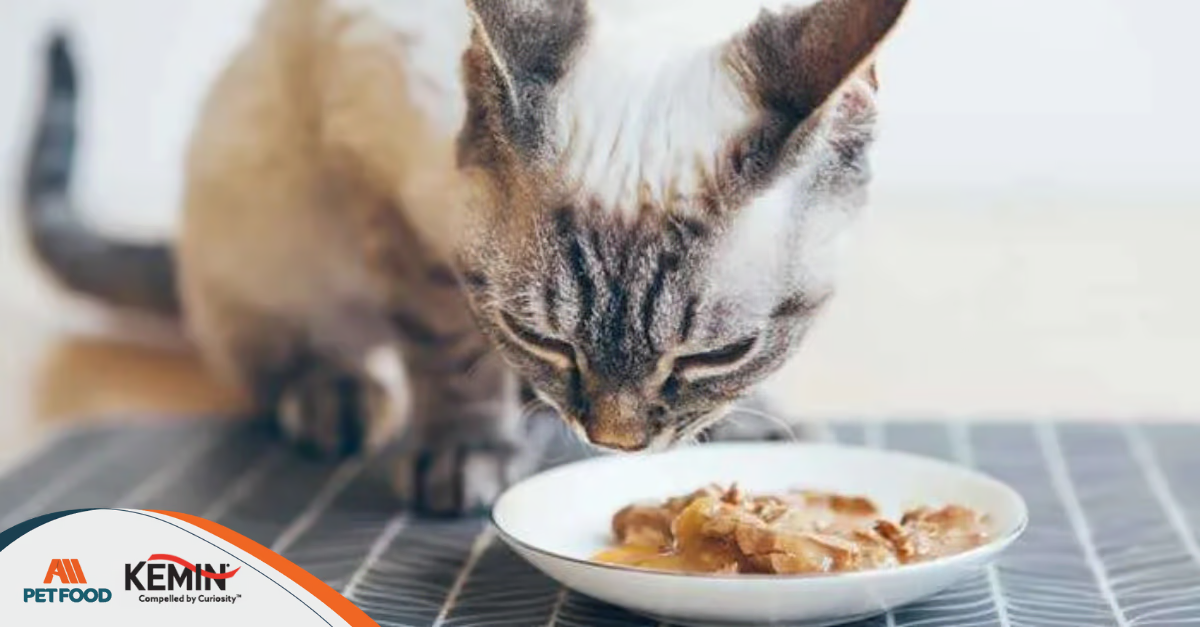 Palatants
Palatants
8+ MIN
01/08/2025
Enhancing Palatability: The Role of Pet Food Manufacturing in Pets Preferences
Differences in Cats and Dogs
To begin the discussion on palatability, we must first understand our primary customers: cats and dogs. The variability between these companions —their behavior, eating habits, and nutritional needs— must be considered to satisfy them and encourage pet parents to repurchase their food. Understanding what makes cats and dogs eager to eat will help us optimize kibble manufacturing and achieve higher palatability.
One key difference between cats and dogs is their feeding behavior. Cats are carnivores, while dogs are omnivores, leading to different nutritional needs and formulas. For example, cats require higher protein levels and quality compared to dogs. FEDIAF recommends 18-25% protein for dogs and 25-33% for cats, affecting the starch content in their recipes and the nutritional values of the kibbles.1 These differences necessitate adjustments in production parameters to enhance palatability.
Cats' and dogs' sense of taste, while both based on a carnivorous pattern, vary significantly. Dogs enjoy sweet and certain acidic tastes, like carboxylic and phosphoric acids, whereas cats prefer bitter flavors and are not sensitive to sweetness.2
Dogs typically consume large meals quickly, possibly due to their pack heritage, and tend to grab kibbles with their teeth and grind them, preferring softer kibbles. Conversely, cats eat several small meals a day, mimicking their hunting habits, and use their tongues and molars to break food, preferring harder, drier kibbles.
Lastly, smell is a critical factor in palatability for both cats and dogs, with their sense of smell being far more sensitive than humans. Cats have twice as many smell-sensitive cells as humans, and dogs can have up to 300 million scent receptors, compared to around 5 million in humans.3
It's clear that we cannot produce cat food the same way we make dog food if we aim to satisfy both.
Importance of the Choice of Raw Material and Ingredient for Better Palatability
Let's delve into the pet food manufacturing process to identify ways to enhance palatability.
Before production, it's essential to carefully choose raw materials and other ingredients. Factors like high-quality proteins, lipid oxidation, freshness, and ingredient proportions significantly impact texture. Optimizing palatant choice and application is also crucial.
We tested replacing a certain percentage of non-hydrolyzed chicken meal and chicken liver with the same quantity of hydrolyzed chicken liver in a kibble recipe. The recipe remained identical except for the protein component. To assess pet food preferences, we conducted two-bowl tests, also known as versus tests. In these tests, two bowls were prepared, each containing a different type of pet food. We then measured the amount of food consumed from each bowl to determine the pet's preference. We observed significant improvements in palatability with a 5% or 10% inclusion of hydrolyzed chicken liver (Figure 1). Choosing the right protein is the first step to better palatability.
Figure 1: Palatability of diets Including chicken liver, chicken meal and hydrolyzed chicken liver4.
Oil and fat play a critical role as they are coated on the outside of the kibble first and are linked to freshness and oxidation. For both cats and dogs, palatability generally decreases when free fatty acid levels increase and when signs of oxidation appear. Controlling these factors is essential.
Several microingredients can affect palatability. Some may promote oxidation (e.g., certain minerals), while others can directly boost palatability, like specific sugars, salts, and amino acids.
Each of these components has a direct or indirect impact on the final product's palatability. Understanding and optimizing these elements can lead to better-tasting and more appealing pet food.
Pet Food Processing: From Grinding to Drying
The initial steps of grinding and mixing raw materials and other ingredients significantly affect the homogeneity and particle size of the kibble. In extreme cases, inadequate grinding can leave noticeable grain pieces post-extrusion. Even mild cases of particle size variations within a kibble mixture can alter texture and reduce homogeneity.
After mixing, the ingredients typically move to the preconditioner, where the type and quantity of starch used play a crucial role. During this process, starch gelatinization occurs as starch and water are heated, causing the starch granules to swell and irreversibly absorb water. This gelatinization begins in the preconditioner and continues in the conditioner.
The level of gelatinization is vital for kibble expansion and cohesion. Insufficient starch causes kibbles to fall apart if attempting to reduce density, while higher starch levels increase density (Figure 2). This step is key for both kibble production and palatability, especially for cats but also for dogs. The hardness of dry cat food granules significantly affects their preference, with harder products being more favored by cats according to a study by V. Eles, I. Hullar, and R. Romvari.5
For cat kibble, balancing the necessary levels of protein and fat is challenging, as it limits room for starch needed for kibble expansion and cohesion. Meeting the nutritional needs of cats and dogs while ensuring correct kibble expansion and palatability is essential.
Gelatinization continues during extrusion, playing a determining role. The homogeneity of the dry mix can vary depending on the equipment used, such as a twin-screw extruder, which helps homogenize and increase palatability.
Additionally, kibble shape and size are important considerations. Dogs typically prefer larger kibbles, while cats might struggle with a kibble that is too big for their mouths. Larger kibbles also have less surface area for palatants (for quantity equivalent). Complex shapes may decrease palatability due to the difficulty for the pets to prehend the kibbles.
Figure 2: Impact of gelatinization on the bulk density of the kibbles6.
Post-extrusion, drying is a critical step that must be carefully controlled. Excessive moisture variability in a batch can affect palatability from one bag to another. The market average for optimal dog food palatability is around 8% moisture, balancing food safety and mold prevention. For cat food, the target is closer to 6% moisture, the objective being to have the lowest moisture but without breakable kibbles. Consistent moisture levels within batches allow for better control over palatability. Rapid or excessive drying can negatively affect kibble texture and palatability (drier outside than inside).
Typically, a shifting step after drying and before coating removes the dust and powder (fines) produced after extrusion. These fines negatively impact palatability by being unappealing and causing palatants to be lost, reducing the amount coated on the kibbles.
Pet Food Processing: Coating Optimization
One of the most critical steps in achieving optimal palatability is the coating of fat and palatants. This process can be optimized in several ways.
It's important to remember that the ingredients used for coating vary depending on whether the food is for cats or dogs. Fat, usually applied in amounts ranging from 1% to 15%, serves nutritional purposes and protects the kibbles, often containing antioxidants. Fat helps palatants adhere to the kibble and provides an initial level of palatability. However, fat alone isn't sufficient to significantly boost palatability. In tests without palatants, we found that consumption rates were below average, indicating that neither cats nor dogs were satisfied.
To enhance palatability, we add liquid palatants (1% to 4%) or powder palatants (0.5% to 3%), or both. Liquid palatants enhance aromas and can act as binding agents for the powder. These are mainly used for dog food, given the higher moisture targets and preference for smoother kibbles. As scent is a crucial factor for dogs, aroma plays a significant role. Powder palatants add flavor, help to control the moisture and are typically used for cat food, which targets low moisture and high protein content. Cats have three types of chemoresponsive tongue receptor units, each responding to different compounds that can be found in quantity in powder palatant (amino acid, inorganic salts, nucleotides...)7.
It's generally recommended, though not mandatory, to apply fat first, followed by liquid palatants and then powder palatants to optimize the effectiveness of each component. Adequate amounts of fat and liquid palatants should be used to ensure the powder adheres well to the kibble.
Optimizing the spraying system and mixing processes is vital for effectively applying these ingredients. Here are key factors to consider:
1. Nozzle selection and placement (Figure 3):
The diameter and pressure of the nozzles affect the homogeneity and efficiency of the coating. Larger diameters may cause excess coverage, while smaller ones might not cover all kibbles.
Pressure impacts droplet size. Too low-pressure results in concentrated sprays, while too high pressure creates a cloud, leading to palatant loss.
Nozzles should be spaced adequately to avoid overlap and ensure even coverage. They should also be positioned close enough to reach the kibbles without significant loss of liquids.
2. Mixing process (Figure 4):
In a batch coater with two shafts, mixing from the outside to the inside creates a hill, enhancing palatant coating. Mixing from the inside to the outside creates a hole, leading to clustering and poor homogeneity.
Figure 3: Optimizing coating homogeneity
Figure 4: Optimizing mixing
By carefully selecting ingredients and optimizing application techniques, we can significantly improve the palatability of pet food, ensuring satisfaction for both pets and their owners.
We cannot finish discussing the impact of coating on palatability without addressing the main differences between batch and continuous coaters.
A batch coater generally provides more homogeneity and allows for parameter adjustments from one batch to another. Since it is enclosed, it enables high-rate fat coating (using vacuum coaters) and simplifies the cleaning process. It also helps prevent dustiness during powder coating. However, batch coating is typically slower and more expensive. The main advantage of a continuous coater is its faster process, making it more cost-effective.
In general, batch coating is more recommended when higher palatability is required, especially when producing super premium products.
Conclusion
Understanding the unique needs and behaviors of cats and dogs is fundamental to optimizing the palatability of pet food. Given their distinct feeding habits, nutritional requirements, and sensory preferences, it is clear that a one-size-fits-all approach does not work. The manufacturing process, from grinding to drying, plays a crucial role in determining the final product's texture and palatability. Adequate starch gelatinization, precise mixing, and controlled extrusion and drying processes are essential to achieve the desired kibble consistency and taste. Each step must be fine-tuned to maintain the integrity and appeal of the kibble, catering to the specific preferences of cats and dogs. Coating, one of the most critical steps for enhancing palatability, requires careful consideration of the ingredients used and the application techniques. By optimizing the use of fats and palatants and ensuring efficient spraying and mixing, we can create a more appealing product.
In conclusion, improving the palatability of pet food involves a multifaceted approach that encompasses ingredient selection, precise manufacturing processes, and effective coating techniques. By addressing these factors, we can ensure that both cats and dogs receive food that satisfies their taste preferences.
References
1 https://europeanpetfood.org/wp-content/uploads/2024/09/FEDIAF-Nutritional-Guidelines_2024.pdf
2 John W S Bradshaw, The Evolutionary Basis for the Feeding Behavior of Domestic Dogs (Canis familiaris) and Cats (Felis catus),The Journal of Nutrition
3 Padodara, R. J. and Ninan Jacob, Olfactory Sense in Different Animals
4 Kemin researches
5 V. Éles, I. Hullár, R. Romvári, Texture of dry cat foods and its relation to preference
6 https://www.cerealsgrains.org/publications/cc/backissues/1992/Documents/69_401.pdf
7 Watson, P.E.; Thomas, D.G.; Bermingham, E.N.; Schreurs, N.M.; Parker, M.E. Drivers of Palatability for Cats and Dogs—What It Means for Pet Food Development. Animals 2023, 13, 1134.
By Maïlys Le Thiec, Technical Service Manager | Kemin Nutrisurance EMEA
Source: Kemin Nutrisurance
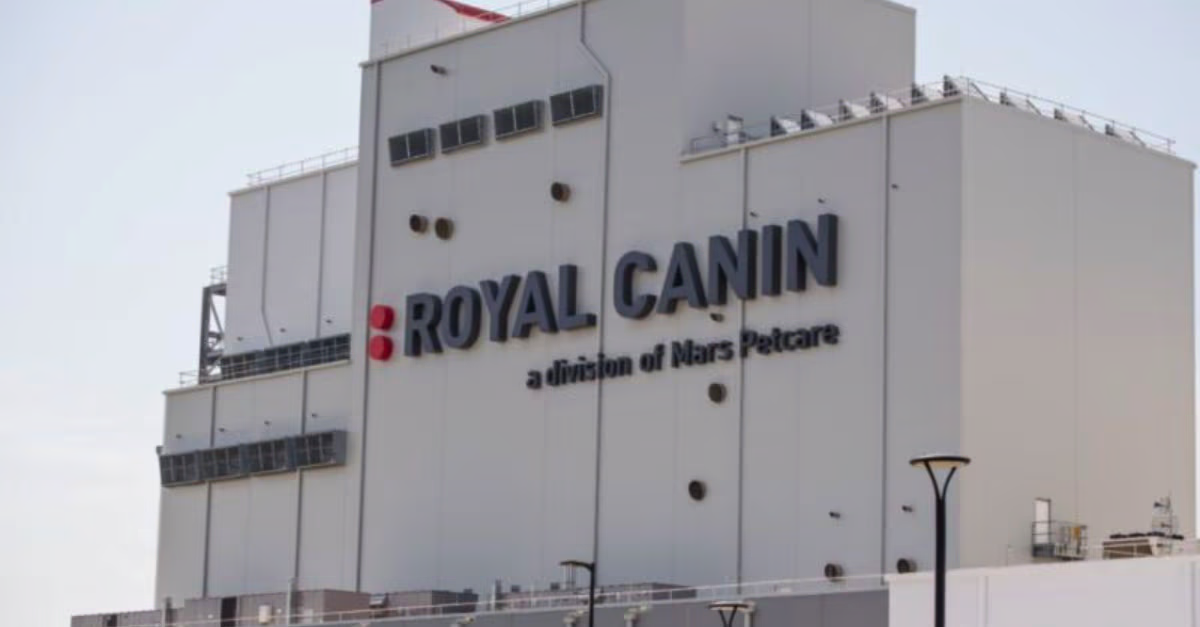 Manufacturers
Manufacturers
3+ MIN
31/07/2025
Mars To Invest $2 Billion Into U.S. Manufacturing Through 2026
MCLEAN, VA (July 29, 2025) – Mars, Incorporated, a global leader and maker of more than 40 beloved snacking, food and pet brands in the United States, including Royal Canin®, M&M'S®, SNICKERS®, Ben's Original™, PEDIGREE ®, and SHEBA®, is announcing plans to grow its U.S.-based manufacturing by investing an estimated $2 billion into its operations across the country by the end of 2026. This multi-billion-dollar investment builds on the ongoing Mars commitment to U.S.-based manufacturing, where 94% of Mars products sold in the U.S. are produced locally in the U.S. In the last five years, the company invested over $6 billion into U.S. manufacturing. 'This investment is about building a stronger, more resilient business in the U.S. – one that can grow with our consumers, deliver for our partners, and create lasting economic impact in the communities where we operate,' said Claus Aagaard, CFO of Mars, Incorporated. 'The U.S. is our biggest and most important market, and a key engine of growth for the long term – not only through our legacy manufacturing footprint but also through the expansion of strategic acquisitions like Nature's Bakery, which is already scaling quickly. That's why we've committed $6 billion to U.S. manufacturing in the last five years, with another $2 billion planned by the end of next year.' The $2 billion dollar investment is supporting a new, $240 million facility for Nature's Bakery in Salt Lake City, Utah, opening tomorrow. The 339,000+ square-foot Nature's Bakery site will create more than 230 new jobs in the region and expand the brand's capacity, with the ability to produce nearly one billion bars each year. Earlier this year Mars opened a $450 million Royal Canin® dry pet food facility in Lewisburg, Ohio – the brand's largest dry pet food factory globally - creating up to 270 new jobs in the area. As a privately-held, family-owned business that has been headquartered and operated in the U.S. for more than a century, Mars has long taken a generational approach guided by its purpose – the world we want tomorrow starts with how we do business today. Mars has a presence in the U.S. across 49 states, employs over 70,000 Associates and operates 38 factories in addition to veterinary clinics, labs and 16 global and regional offices. In the last 5 years, Mars has added over 9,000 U.S.-based Associates. ABOUT MARS, INCORPORATED Mars, Incorporated is driven by the belief that the world we want tomorrow starts with how we do business today. As an approximately $55bn family-owned business, our diverse and expanding portfolio of leading pet care products and veterinary services support pets all around the world and our quality snacking and food products delight millions of people every day. We produce some of the world's best-loved brands including ROYAL CANIN®, PEDIGREE®, WHISKAS®, CESAR®, DOVE®, EXTRA®, M&M'S®, SNICKERS® and BEN'S ORIGINAL™. Our international networks of pet hospitals, including BANFIELD™, BLUEPEARL™, VCA™ and ANICURA™ span preventive, general, specialty, and emergency veterinary care, and our global veterinary diagnostics business ANTECH® offers breakthrough capabilities in pet diagnostics. The Mars Five Principles — Quality, Responsibility, Mutuality, Efficiency and Freedom — inspire our 150,000 Associates to act every day to help create a better world for people, pets and the planet. Source: Mars
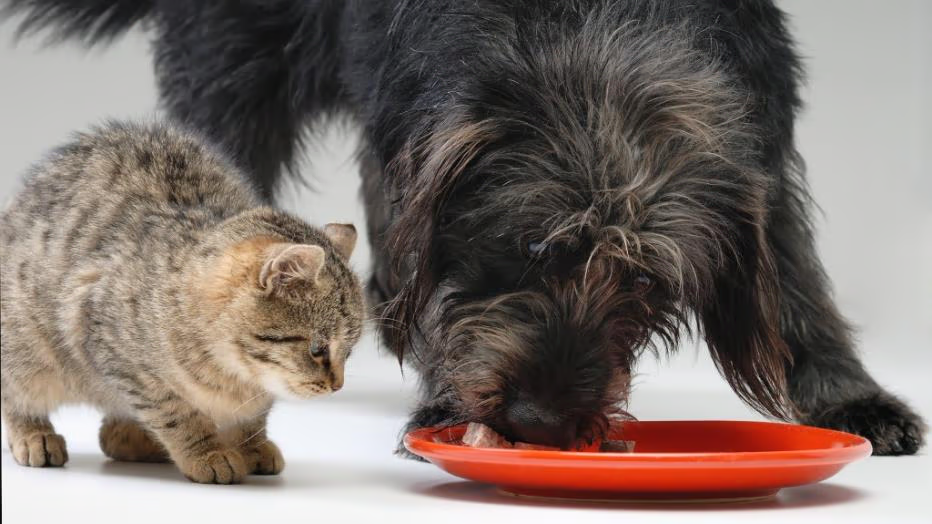 Cats
Cats
3+ MIN
30/07/2025
Can I feed dog food to my cat?
Cats and dogs are different!
Dog food provides all the nutrients a dog needs to stay healthy, but they are not formulated to provide the additional nutrients that cats need in their diet. Although cats and dogs belong to the same order Carnivora together with species like bears or Giant panda, the dog's feeding behaviour is omnivorous, while the cat is a true carnivore. This means that cats must have certain nutrients in their diet that are only found in animal based ingredients.
Dogs developed various metabolic traits which allow them to utilize carbohydrates and to synthesize certain nutrients found in animal based ingredients from plant sources (e.g. vitamin A from beta-carotene). Cats have specific nutritional needs that dogs do not have. A complete and balanced diet designed for dogs may not provide the same nutrients at sufficient levels for cats.
Protein
Dietary Protein is required by both dogs and cats for energy, growth and repair. Cats require a higher amount than dogs during both growth and adult maintenance, due to increased enzyme activity. In addition, cats are less able to down-regulate their rate of protein breakdown when presented with a diet low in protein. For this reason, most cat food tends to contain more protein than dog food.
Arginine is an amino acid, one of the building blocks of proteins. The cat is very sensitive to even a single meal free of arginine. In the absence of arginine in the diet, nitrogen cannot be efficiently metabolized through the urea cycle and can lead to death from ammonia intoxication in cats. Dogs are less sensitive to arginine free diet and can at least partially use an alternative amino acid, ornithine, to complete the urea cycle.
Taurine
Taurine is another amino acid that is distributed throughout most body tissues. Taurine is important for healthy functioning of the heart, retina, bile fluid and certain aspects of reproduction. Cats must eat preformed taurine and since taurine is not found in plants, cats must consume animal-based ingredients to obtain it. Unlike cats, in the absence of dietary taurine, dogs are able to manufacture enough taurine from other amino acids to meet their needs.
Vitamins A and B3 (niacin)
Vitamin A is required at the cellular level by both cats and dogs, and is essential for healthy vision and a healthy skin. Cats lack the enzymes to break down plant-produced carotenoids and must eat preformed Vitamin A that can only be found in food of animal origin. Dogs have enzymes in the lining of the intestine that can break down plant carotenoids and convert these into active Vitamin A.
Niacin is an essential B vitamin required by the cat and dog for skin and coat health, and for healthy metabolism. However, the cat can only obtain niacin by eating the preformed vitamin, and unlike the dog, cannot convert tryptophan, a dietary amino acid, to niacin. Meat and fish are great sources of niacin. The dog obtains niacin in two ways, either by converting tryptophan into niacin or by eating preformed niacin.
Cats need animal fat
Arachidonic acid is an essential fatty acid that plays a vital role in fat utilisation and energy production. The cat cannot convert sufficient levels of other fatty acids such as linoleic acid from plants to arachidonic acid even when the diet is rich in linoleic acid, because the cat liver does not have the sufficient enzyme activity.
Dogs can make their own arachidonic acid from other essential fatty acids and therefore in the dog, unlike the cat, arachidonic acid is not considered an essential nutrient.
What does it all mean?
It is important that the cat is fed cat food that is complete and balanced for their particular nutritional needs. The requirements and often the taste preferences of the dog and cat are different. This is why pet food manufacturers offer both dog food and cat food.
By choosing to feed your cat a nutritionally complete and balanced cat food (and water!), all the nutrition is taken care of and you can be confident that your cat is getting everything it needs in its food for a healthy and active life.
Download the factsheet.
Source: FEDIAF
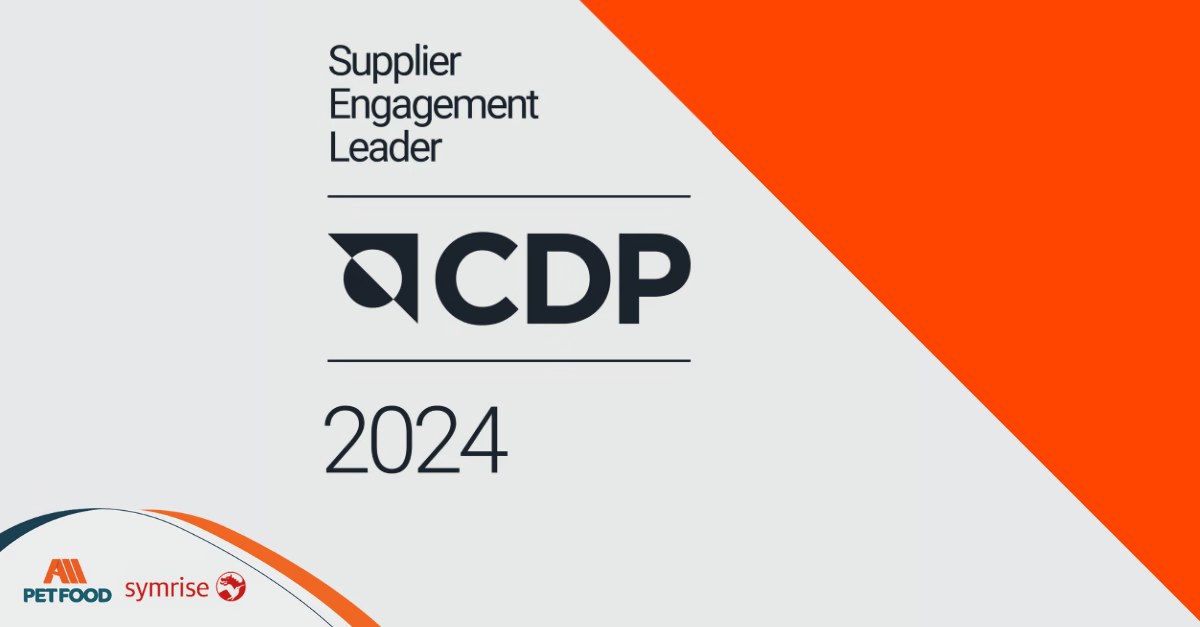 Market Information
Market Information
2+ MIN
29/07/2025
Symrise earns consecutive top 'A' rating from CDP for its supply chain engagement
Symrise could meet the expectations of the expanded CDP methodology of the current year and repeat its top supply chain rating. To achieve this, it involves over 5,000 partner suppliers around the globe, all of whom have set themselves their own or science-based climate targets. Today, more than 80 per cent of Symrise's purchasing volume comes from suppliers with individual climate goals. Symrise regularly documents and reviews each partner's environmental data, to quantify carbon dioxide emissions along the chain and identify potential reduction opportunities.
'Our products rely on more than 10,000 raw materials. Every ton of CO₂ saved makes them more climate-friendly,' says Dr Isabella Tonaco, Chief Sustainability Officer. 'This renewed A rating confirms our commitment and motivates us to keep improving together with our suppliers.'
CDP, a global non-profit organization, assesses five areas: governance, climate targets, reporting of indirect or 'Scope 3' emissions (supply-chain CO₂), risk management and supplier collaboration. Symrise scores top marks across the board. A board-level mandate keeps climate action at the center of company strategy, while financial incentives encourage purchasing teams and suppliers alike to cut carbon dioxide emissions.
Symrise also complies with Germany's Supply Chain Act, which sets strict environmental and social standards. This means fewer hidden emissions and clearer ingredient provenance. In the long term, Symrise aims to achieve net zero emissions for Scope 1, 2 and 3 by 2045. It also helps suppliers adopt energy-efficient technology, circularity and resource-saving farming methods such as regenerative agriculture.
About Symrise:
Symrise is a global supplier of fragrances and flavors, cosmetic active ingredients as well as functional ingredients. Its customers include perfume, cosmetics, food and beverage manufacturers, the pharmaceutical industry and producers of dietary supplements and pet food.
With sales of around €5.0 billion in the 2024 financial year, the company is one of the world's leading providers. The Group, headquartered in Holzminden, Germany, has more than 100 locations in Europe, Africa and the Middle East, Asia, North and Latin America.
Together with its customers, Symrise develops new ideas and market-ready concepts for products that form an indispensable part of everyday life. Economic success and corporate responsibility are inextricably linked.
Symrise – always inspiring more...
www.symrise.com
Source: Symrise
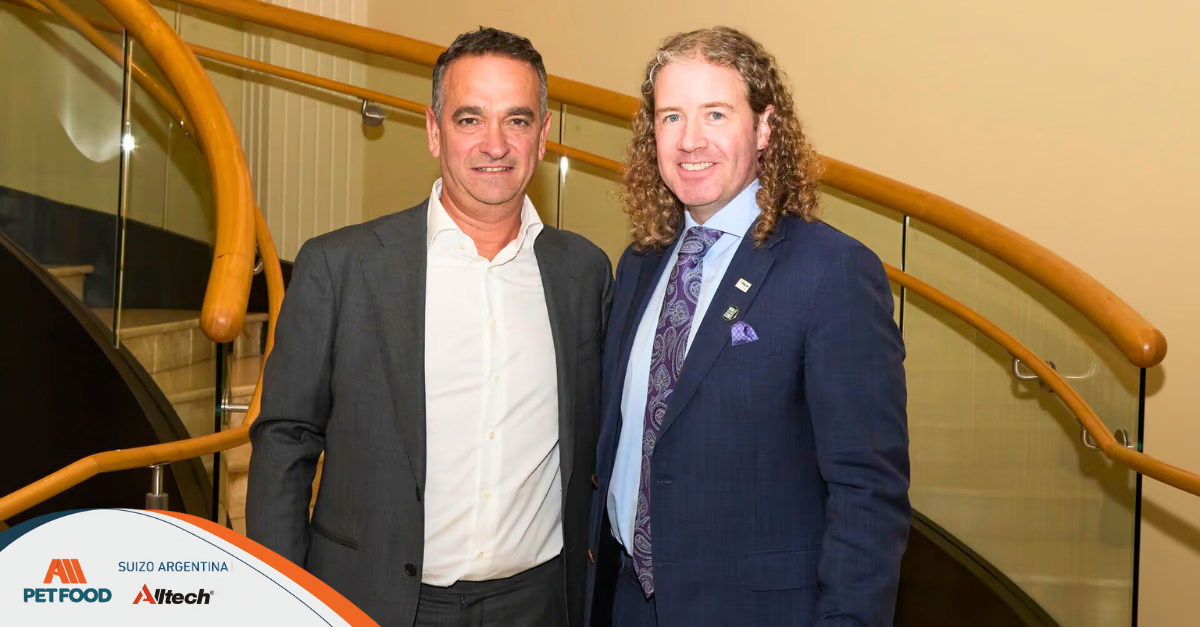 Market Information
Market Information
2+ MIN
28/07/2025
Alltech and Suizo Argentina Announce Strategic Joint Venture
BUENOS AIRES, ARGENTINA —With over 40 years of experience in the global market, Alltech reaffirms its commitment to sustainability and support for the agriculture and livestock industries through a strategic joint venture with Suizo Argentina. The American multinational appointed the company for operations, commercialization, and distribution of its high-quality products, which have proven to optimize animal health and performance while reducing the environmental impact of animal production.
'Argentina has always been a key market for Alltech, and home to many of our friends,' said Dr. Mark Lyons, President and CEO of Alltech. 'The alliance with Suizo Argentina —a company that shares our values and vision for a more sustainable future— strengthens that bond. Together, we will empower local producers with effective nutritional solutions and contribute to the long-term growth of Argentina's agricultural and livestock sectors.'
Through this joint venture, Suizo Argentina will expand and diversify its portfolio in the local animal health and nutrition market. The company will now offer an extensive range of advanced technologies to address current challenges in animal production.
'It is an honor for Suizo Argentina to partner with Alltech, a global leader that shares our commitment to quality, innovation, and sustainability,' added Pablo Viner, General Manager of Suizo Argentina. 'We will work on delivering specific solutions having a positive impact on customers and the national industry.'
Argentina continues to stand out globally for its robust livestock sector and its growing demand for sustainable, effective nutritional solutions. This alliance positions both companies to grow and have a positive impact on the local agriculture and livestock industry.
'We are happy with the new chapter for Alltech in Argentina —a main country in animal protein production and one of the major pet food manufacturers in the world,' noted Paulo Rigolin, Vice President of Alltech LATAM. 'For a company with a presence in over 140 countries, this partnership represents an opportunity to continue driving regional and global growth in the sector.'
For more information about Suizo Argentina, visit suizoargentina.com. To learn more about Alltech's nutritional solutions, visit alltech.com/es-mx.
Source: Suizo Argentina and Alltech
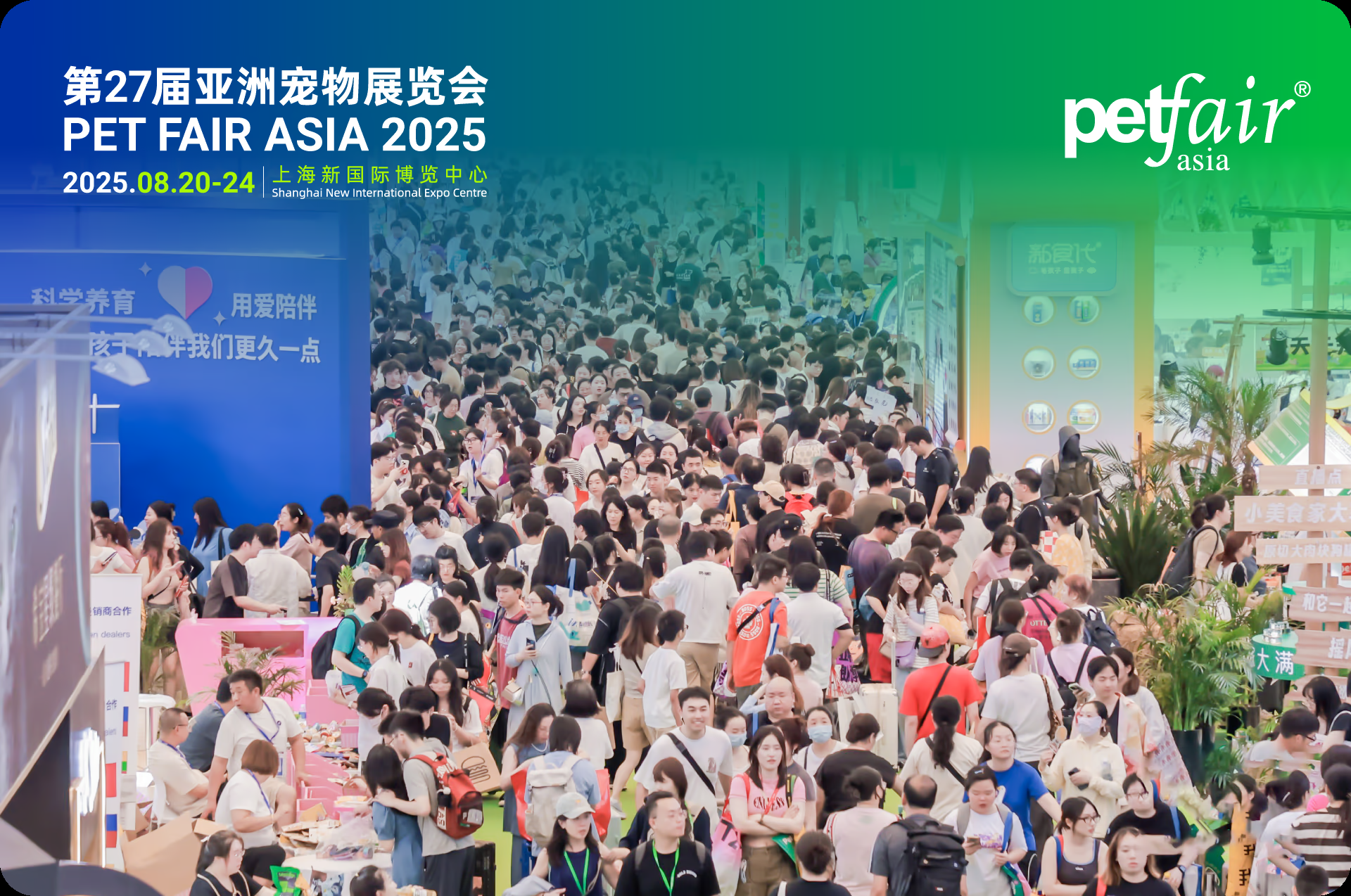 Market Information
Market Information
4+ MIN
25/07/2025
Pet Fair Asia 2025 Exhibitor List is Now Online
The exhibitor list of Pet Fair Asia 2025, scheduled to take place in Shanghai from August 20 to 24, 2025 is now available online HERE. The leading trade show for the pet industry in Asia-Pacific is preparing for its landmark 27th edition with an expansion in scale, international participation, and exhibitor diversity. The 2025 event will host over 2,600 exhibitors, up from 2,500 in 2024, across an impressive 310,000 square meters of gross exhibition space already fully booked. The fastest growth relates to the supply chain and small pet sectors, which together will occupy 10,000 square meters more exhibition space than in the 2024 edition. This growth reflects the continued momentum and resilience of the Chinese and Asian pet industry, driven by rising consumer demand, innovation, and evolving market segments. 'In the midst of a complex global economic and trade environment, Pet Fair Asia 2025 will serve as a vital platform for industry professionals to build new partnerships, explore emerging trends, and navigate the future of the pet business. China continues to play a pivotal role in the global pet economy, with scale, innovation, and dynamic market shaping the sector's development,' stated David Zhong, President at GLOBUS Events, the show's co-organizer. Buyers interested in all types of products for pets can obtain their free badge by registering online at https://reg.petfairasia.com/en/user/register. A Premier Gathering of Leading Brands with Expanding Global Participation Internationally renowned companies in the pet industry, including Acana, ADM, Boehringer Ingelheim, DoggyMan, Elanco, Gambol, Gimborn, Hagen, Hunter, Instinct, Iv San Bernard, Myfoodie, Orijen, Purina, Royal Canin, Schesir, Vitakraft, Wanpy, and Ziwi, among others, have confirmed their participation at the show. Brands such as Alfavet, Animology, Bab'in, Biovico, Grainli, Natural Code, Non-stop, Orthomol VET, and many more, are joining Pet Fair Asia for the first time this year. In addition, this year's event will feature pavilions from Japan, New Zealand, Poland, South Korea, Taiwan, and the United States, highlighting the show's expanding international scope and appeal. Of particular note is that Poland will make its inaugural appearance as an independent pavilion, bringing six co-exhibitors to Pet Fair Asia 2025. Despite ongoing trade policy discussions and broader macroeconomic uncertainties, international companies and stakeholders in the pet industry remain actively engaged in the Chinese market. Notably, the USDA will once again organize the U.S. pavilion at Pet Fair Asia, this time featuring seven co-exhibitors, underscoring both the strategic importance of the show in the Asian market and the enduring confidence of the US pet companies in its long-term potential. 'We are excited to announce that we will organize the USA Pavilion at this year's Pet Fair Asia. The pavilion will showcase the strength and diversity of high-quality USA products and ingredients. We look forward to welcoming visitors at our stand in Hall N5," stated Alex Blamberg, the Director of the USDA Agricultural Trade Office at the U.S. Consulate General in Shanghai. Event Agenda at a Glance In addition to its record-breaking exhibition scale, Pet Fair Asia will host a series of high-level concurrent conferences, offering attendees valuable insights into the latest trends, challenges, and opportunities shaping the global pet industry. Kicking off the program on August 19, the 14th International Pet Industry Summit (IPIS)– Asian CEO Summit will explore the theme 'Navigating the Pet Economy's New Potential in a Shifting Landscape.' The summit will address key topics such as global trade dynamics, the emotional value of pets, AI-driven innovation, cross-industry growth strategies, and full-lifecycle health management. Among the distinguished speakers and panelists are Harry Zhang, National Lead at KPMG China; Michael Lou, Chairman of the World Pet Association (WPA); Juan Xu, General Manager at Royal Canin China; and Miura Atsushi, a best-selling author from Japan, who will explore the role of pets in the era of emotional value. The summit will also feature the exclusive release of the 2025 China pet market report by the Asia Pet Alliance (APA). On August 20, the Asia Pet Food Summit will gather experts to discuss the future of pet nutrition, with a focus on sustainable practices, lifecycle health, and the growing demand for fresh and functional pet foods. Covering everything from biotech innovations to smart manufacturing, the summit is essential for brands looking to maintain a competitive edge. Among the keynote speakers at this event is Jim Lamancusa, CEO of the Pet Sustainability Coalition (PSC). The full list of events taking place at Pet Fair Asia 2025 can be found at https://en.petfairasia.com/activity/. For more information about the show visit: www.petfairasia.com Source: Pet Fair Asia
 Nutrition
Nutrition
2+ MIN
24/07/2025
Pet Food Allergies
Adverse reactions by dogs and cats to food are generally associated with either pet food allergies or hypersensitivities (i.e., an immunological response) or with food intolerance (non-immunological responses including food poisoning from consumption of food containing substances toxic to pets such as chocolate and onions, or an adverse reaction to the ingestion of garbage.) [1], [2], [3], [4] The exact incidence of food allergy in dogs and cats is unknown but veterinary research indicates it is infrequent. For example, diagnosed food allergy accounts for approximately 1% of all skin diseases in dogs, for those skin diseases associated with allergies, 10% of those are related to the animal's diet. In contrast, house dust mites, pollen, molds, and flea or other insect bites are considered common causes of pet allergies.
The most common symptom of an allergic reaction in dogs and cats, including a reaction to food, is itching and scratching. Other symptoms such as scooting, skin or ear infections, odor, and/or bumps on the skin have also been observed. Flea bites are the most commonly diagnosed cause of itching for both dogs and cats, so it is important to also check for fleas if your pet is scratching itself. Diarrhea or vomiting are not common in dogs and cats with food allergy, with 10-15% of diagnosed food allergies associated with those symptoms. Pets much more frequently experience diarrhea or vomiting as the result of food intolerance.
If one does suspect food allergy, a consultation with a veterinarian will help ensure the symptoms are not due to some other root cause and allow pet lovers to treat and manage their dog or cat's discomfort.
The best tool available to veterinarians to diagnose food allergy is an elimination diet, in which the ingredients in the current diet, such as proteins and carbohydrates, are replaced. An elimination diet will also include the removal of any additional treat or chew toys that the animal may be using. The process can take between 8-12 weeks with the pet owner and veterinarian monitoring the pet's condition to determine if the symptoms are diminishing.
References
[1] Roudebush P, Guilford WG, Shanley KJ: Adverse Reactions to Food, Small Animal Clinical Nutrition, Ed 4. Topeka, KS, Mark Morris Institute, 2000, pp 431-453.
[2] Kennis R: Use of Atopic Dogs to Investigate Adverse Reactions to Food. JAVMA 221:638-640, 2002.
[3] Leistra MHG, Markwell PJ, Willemse T: Evaluation of Selected Protein-Source Diets for Management of Dogs with Adverse Reactions to Foods. JAVMA 219(10):1411-1414, 2001.
[4] A. Verlinden, M. Hesta , S. Millet & G. P.J. Janssens (2006) Food Allergy in Dogs and Cats: A Review, Critical Reviews in Food Science and Nutrition 46:3, 259-273.
Source: Pet Food Institute
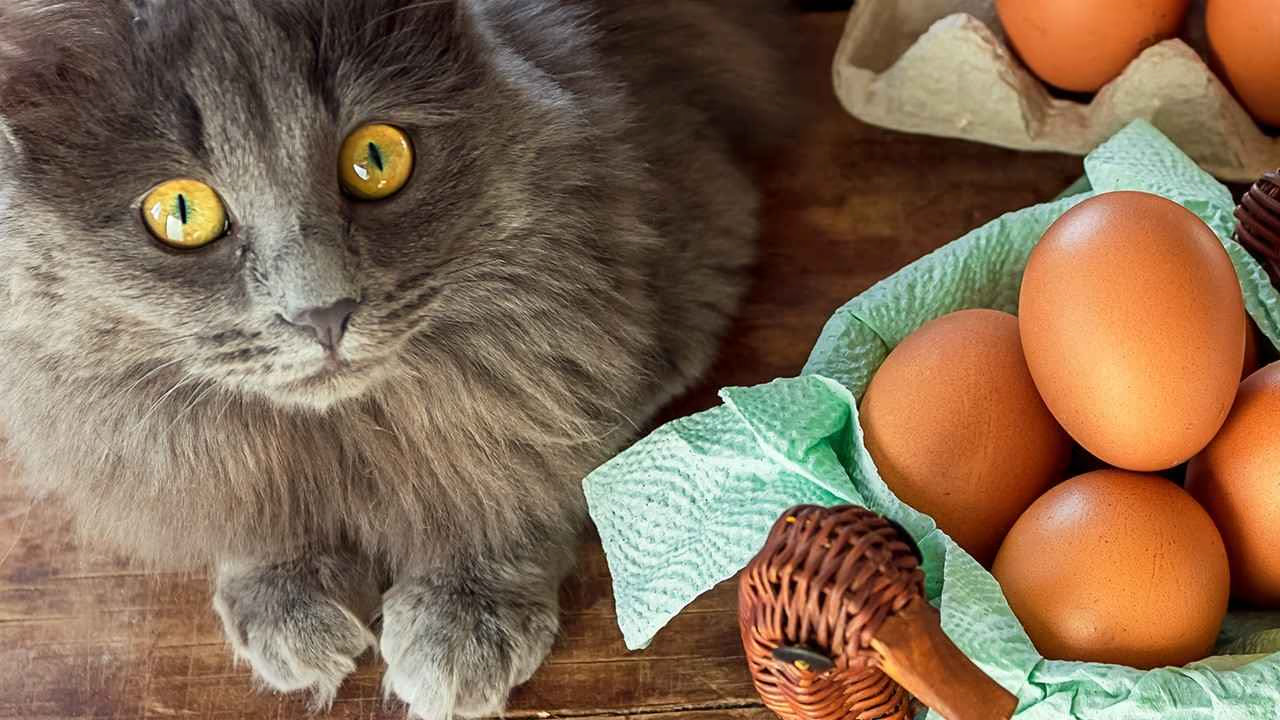 Nutrition
Nutrition
5+ MIN
23/07/2025
Why Dried Egg is the Perfect Ingredient for Pet Food?
How can an egg turn into a chick without external help, except a bit of heat from a devoted mother? The answer is simple: Eggs contain all the basic elements for life: high-quality protein, valuable fat, and unique bioactive compounds.
Dried eggs concentrate all these nourishing treasures, making them a powerful solution to support pet growth and health. To top it off, dried eggs are convenient, sustainable, label-friendly, and pet parents like them.
What else?
In an eggshell
The structure of eggs is well known, but their essential components may be less familiar.
The albumen, commonly known as egg white, constitutes around 60% of the egg's weight. It consists primarily of water and protein.
The yolk, surrounded by its own membrane, makes up approximately 30% of the weight of the egg. It contains most of the egg's fat and is a source of lipid-soluble vitamins such as A, D, and E.
The shell, which has a membrane adhering to its inner surface, is the protective outer covering. It comprises the remaining 10% of the total weight of an egg and is essentially made of calcium.
Dried egg: a concentrate of nutrition
Dried egg is real egg, simply dried. It concentrates all the nutritional benefits of a fresh egg. Egg powders are obtained by rapid spray drying followed by pasteurization. This smooth process retains all the components present in fresh eggs, with the same bioavailability and properties. Moreover, it ensures product standardization, stability, and safety.
Egg drying process
Several dried egg-based ingredients can be obtained depending on the part of the egg that is dried.
With a protein level as high as 80% and fat content that can reach more than 50%, dry ingredients made from egg constitute a convenient toolbox for formulators who can choose the best product(s) to develop and balance their formula.
Dried egg-based ingredients
The ideal protein
The major reason dried egg is a nutritional pearl is its superior protein quality. Egg protein has an ideal amino acid profile that meets all of a pet's needs
.
Egg contains low levels of taurine, which is required in cat foods per FEDIAF and AAFCO nutrient requirements.
Dried egg is a particularly good source of sulfur amino acids such as methionine and cysteine. These compounds, essential to dogs and cats, are often less available in other commonly used protein sources.
Crucial amino acid profile of pet food ingredients
Egg protein is highly digestible and has greater efficacy than most traditional raw materials used in pet food. The precious amino acids contained in dried egg protein are optimally assimilated by animals.
Digestability of main protein sources
⭐ A golden fat
Along with superior protein quality, egg contains a precious fat fully located in the yolk. Made up of more than 60% unsaturated and polyunsaturated fatty acid, egg fat contains omega-3* and omega-6 essential fatty acids, including linoleic, α-linolenic acid, and DHA. Dried products derived from whole egg and egg yolk are a good source of lipids essential to dogs and cats.
Level of omega-3s, especially DHA and EPA, varies according to the diet of the chicken.
Bioactive compounds with precious health benefits
Beside its optimal nutritional profile, dried egg contains numerous bioactive compounds that can support cat and dog health.
Egg contains lysozyme and ovotransferrin, two enzymes with strong antibacterial qualities.
Egg offers immune-supporting properties. It contains antibodies that help to passively protect against diseases, especially in puppies and kittens.
Egg contains high levels of both lutein and zeaxanthin, carotenoids that act as natural antioxidants and help preserve optimal cellular function.
Egg contains phospholipids that are important for cellular membrane composition and repair. Along with anti-inflammatory effects, they may have neurological benefits in senior dogs.
Egg is also rich in cholesterol, an important component of cell membranes, required for the growth of infants. It is notably involved in the formation of several hormones.
Easy to formulate
Dried egg is an ideal ingredient for formulators to work with.
Thanks to its unique protein profile, dried egg can balance out variability in the nutrient composition of other ingredients, making it an 'insurance' protein in pet food formulas.
With its high levels of essential amino acids, dried egg can be used at a lower dosage than main raw materials used in pet food.
Amount of ingredient needed
Egg-based powder also contains low ash levels (less than 6%) compared to meat meals commonly used in pet food. They can easily be included in the pet food formula without exceeding the limit for calcium and phosphorus.
Dried eggs are compatible with numerous pet food formulas, including diets for pets with sensitive digestion or who eat vegetarian diets.
Easy to handle
Available in powdered, granulated, and pelleted formats, dried eggs can be easily applied into several types of pet food, together with other dry ingredients, without specific equipment.
When made and stored correctly, they have a long shelf life of up to 24 months, ideal for storage, transportation, and formulation.
♻️ Sustainable sourcing wisely shared between human and pet
Dried egg-based ingredients are made from the valorization of egg by-products from human food manufacturing.
Turning waste flows from human food into feed grade premium ingredients for pet food contributes to a circular and positive food system. It addresses the issue of protein scarcity while avoiding competition with human food.
Eggs in food and pet food
Appreciated by pet parents, label friendly
Pet owner expectations of pet food ingredient quality and origin rise as their nutritional knowledge and eco-awareness increase. Among all candidates to substitute for traditional protein sources like poultry meal, dried eggs are the most easily recognized and accepted by consumers.
"More than 8 out of 10 owners of dogs and cats would agree to feed their petwith egg protein."
Surveys conducted in NAM and Europe showed that more than 8 out of 10 owners of dogs and cats would agree to feed their pet with egg protein, more than vegetable or insect proteins*.
Source: Symrise Explorer Global Survey, July 2022 – 1776 cat owners | April 2023 – 1427 dog owners
Pet food manufacturers can easily use dried egg in their formulas and state it on the ingredient list simply as 'egg'.
NB: The rules relating to nutritional claims and ingredients listing on the packaging depend on country regulation. They must be followed by pet food manufacturers.
✅ Take-home points
Dried egg ingredients concentrate all the nutrients of fresh egg, with the same health and nutritional properties.
They have a superior protein quality, with an ideal amino acid profile that helps round out pet food formula amino acid content.
Dried egg ingredients are a good fat source, bringing essential fatty acids and key compounds like cholesterol and phospholipids.
They also contain several bioactive compounds with immune-supporting, antibacterial, antioxidant or anti-inflammatory properties.
Made from by-products not used for human consumption, dried egg is a sustainable solution widely accepted by pet parents.
Want to learn more about one of nature's most complete foods?
Contact our experts: https://petfood.symrise.com/pet-nutrition/egg-ingredients/#get-in-touch
Source: Symrise Pet Food
 Insect Based
Insect Based
5+ MIN
22/07/2025
Por Josiane Volpato
Ingredients and Trends in the Pet Food Sector in 2025 (Part II)
Another expectation for the pet food sector this year is the increase in the consumption of supplements, such as vitamins, fish oil, and probiotics. Especially probiotic snacks that help those pets suffering from digestive disorders and food allergies. Due to the bond between a pet and its owner, who wishes for its health, there is an increased demand for supplements that benefit skin health, fur, anxiety, and aging.
According to research from Packaged Facts in the USA, the most sellout supplements enhance joint mobility, which shows that pets' health and well-being have priority for owners.
From the point of view of the pet food industry, in 2025, it is essential to consider that the recent concern about pets' well-being drives new solutions, e.g., emerging companies that evaluate food acceptability, palatability, and digestibility of animals at home.
Since not all pet food manufacturing companies can test their product palatability and digestibility with their research animals, the emerging ones offer the service by using scientifically proven protocols, making pet food reliably testable at home. This provides manufacturers with key information about the product's benefit in its usage as the animals used have different breeds and vary in ages and genders, which shows an illustrative outlook of the pet food population diversity to the food evaluation.
This methodology reflects the precise situation of pets and owners. Home testing offers an innovative approach essential to the pet food industry, which allows the testing of food palatability, acceptability, and digestibility to occur in the domestic atmosphere, providing trustworthy information about product acceptability.
The main advantage of home testing is the accurate reproduction of the consumption conditions among the destined population. Contrary to tests in controlled laboratory environments, where stress and changes in the routine can influence feeding behavior, tests at home allow animals to show their preferences naturally. In addition, these tests provide broader and more diverse samples, considering age, breed, dietary record, and sensorial preferences, which ensure a more representative test of the pet population.
As they are home tests, owner perception is also a benefit. Pet parents can give valuable feedback about food consumption, behavior, and reception, and besides they provide their perspective on the new product's sensorial characteristics, adding quality information that is not always obtained in laboratory tests.
Home testing can also be challenging. The first problem is controlling experimental variables. In a laboratory, factors such as the amount of food, consumption time, and competences between animals can be controlled. In home testing, the meddling of other pets, changes in the routine, and pet parents' opinions can affect the results.
Moreover, owners' support for the experimental protocol can vary. Its success depends on pet parents' commitment to meet the established rules, accurate measures, and precise reports. To minimize challenges, it is essential that companies making home tests take on scientifically proven protocols, use standardized methodologies, and provide detailed instructions to the participants.
With the growing demand for true and reliable tests, specialized home testing companies are gaining ground in the market. They offer complete services to pet food manufacturers, developing and carrying out food testing protocols that rigorously meet scientific standards.
Companies in the sector have stood out for their detailed and informed tests, which help the industry to develop more attractive and efficient products. These organizations use technologies like remote monitoring, data collection apps, or AI for result analysis to guarantee accurate and reliable tests.
Considering concerns about pets' health and well-being, home testing tends to consolidate as an essential standard for trying new products. It offers companies reliable data about food acceptability and its effects on daily pet lives. This methodology not only contributes to the pet food industry's progress but also reinforces consumers' loyalty to brands that use it.
The industry faces the challenge of including sustainable practices to maintain food quality at a competitive price to also ensure a significant advantage since consumers are aware of the environmental impact that pet products have and seek brands that share their values.
Finally, those who benefit from the trends incorporated in the pet food market are pets themselves.
You can read the first part of the article HERE.
References
Bassi Scarpim, L., de Ramos, E.C., Graziele Pacheco, L., Goloni, C., de Souza Theodoro, S., de Souza Ávida de Castro, T., Carciofi, A.C., 2024. Hydrolysed poultry byproduct meal in extruded diets for cats. Arch. Anim. Nutr. 78, 45–59. https://doi.org/10.1080/1745039X.2024.2312700
Perez-Velazquez, M., Millanes-Mora, M.A., González-Félix, M.L., 2024. Avaliação da hidrólise de farinha de larvas de mosca soldado negra parcialmente desengordurada em dietas para tilápia do Nilo Oreochromis niloticus. Anim. Feed Sci. Technol. 307, 115831. https://doi.org/10.1016/j.anifeedsci.2023.115831
Pet Food Market Size & Forecast 2025-2035 [WWW Document], n.d. . Metatech Insights. URL https://www.metatechinsights.com/industry-insights/pet-food-market-1142 (accessed 12.11.24).
Pet Supplements in the US, 10th Edition Report [WWW Document], n.d. . Free. Group. URL https://www.freedoniagroup.com/packaged-facts/pet-supplements-in-the-us (accessed 12.11.24).
UN/DESA Policy Brief #102: Population, food security, nutrition and sustainable development | Department of Economic and Social Affairs [WWW Document], n.d. URL https://www.un.org/development/desa/dpad/publication/un-desa-policy-brief-102-population-food-security-nutrition-and-sustainable-development/ (accessed 12.11.24).
Zóia Miltenburg, T., Uana da Silva, M., Bosch, G., Vasconcellos, R.S., 2021. Effects of enzymatically hydrolysed poultry byproduct meal in extruded diets on serum angiotensin-converting enzyme activity and aldosterone in cats. Arch. Anim. Nutr. 75, 64–77. https://doi.org/10.1080/1745039X.2020.1849899
Bosch, G., Swanson, K.S., 2021. Effect of using insects as feed on animals: pet dogs and cats. J. Insects Food Feed 7, 795–805. https://doi.org/10.3920/JIFF2020.0084
Cesar, C.G.L., Marchi, P.H., Amaral, A.R., Príncipe, L. de A., Carmo, A.A. do, Zafalon, R.V.A., Miyamoto, N.N., Garcia, N.A.C.R., Balieiro, J.C. de C., Vendramini, T.H.A., 2024. An Assessment of the Impact of Insect Meal in Dry Food on a Dog with a Food Allergy: A Case Report. Animals 14, 2859. https://doi.org/10.3390/ani14192859
By Josiane Volpato, Ingrid Caroline da Silva, Isabela Bogo y Fernando González
Source: All Pet Food Magazine
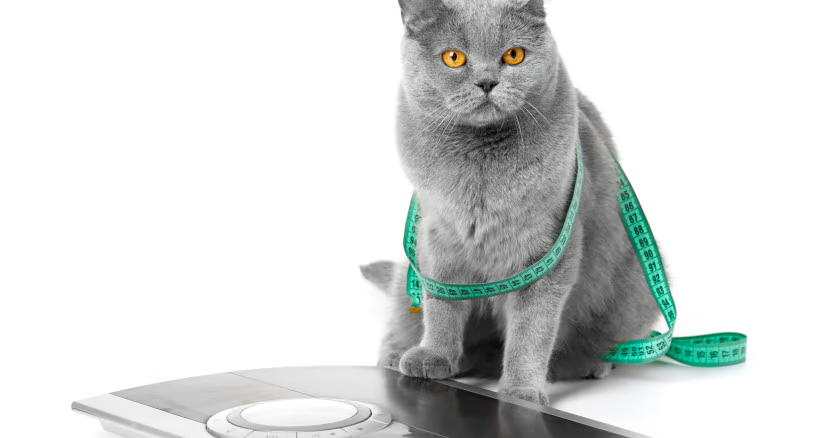 Nutrition
Nutrition
5+ MIN
21/07/2025
Feeding Frequency and Intermittent Fasting in Companion Animals: Evidence-Based Insights for Better Health
As with many human diet trends, this approach has been extrapolated to companion animals, with some proponents advocating for once-daily meals or extended fasting windows. But are such practices appropriate for dogs and cats? And what does current veterinary science suggest about optimal feeding frequency?
While research directly examining intermittent fasting in pets is still limited, we can draw on existing knowledge of canine and feline physiology to evaluate how feeding frequency might affect them.
Dogs: Omnivorous Flexibility or Routine Feeders?
Dogs, as facultative carnivores or omnivores—meaning they eat both animals and plants—have evolved with a degree of metabolic flexibility, allowing them to thrive on a variety of feeding schedules. Studies on feeding frequency in dogs have yielded nuanced results.
In a large-scale study using data from the Dog Aging Project, researchers found that dogs fed once daily had lower reported incidence of cognitive dysfunction, gastrointestinal, dental, orthopedic, kidney/urinary, and liver/pancreatic disorders compared to dogs fed more frequently. However, this was an observational study based on owner-reported data, not a randomized controlled trial (RCT), and as such, it does not establish causality.
This distinction is critical when interpreting the results. Observational studies are valuable for identifying patterns and generating hypotheses, but they are inherently limited by potential biases—such as selection bias, recall bias, and confounding factors—that can influence outcomes. In this case, relying on owner-reported data means that responses may be subjective or inaccurate due to differences in perception, memory, or interpretation. Without the rigor and controls of a randomized trial—such as random assignment, blinding, and controlled variables—it is impossible to determine whether the observed associations are truly caused by the exposure in question or if other, unmeasured variables are at play. Therefore, while the findings may be suggestive and warrant further research, they should be interpreted with caution and not be taken as definitive evidence of a causal relationship.
More controlled studies in dogs are limited, but early research implies intermittent fasting may not be appropriate for pets. Fascetti and Delaney suggest that twice-daily feeding is standard in practice because it helps regulate hunger, prevent bile vomiting syndrome (common in dogs fed once per day), and support consistent energy availability. Moreover, meal frequency may impact postprandial (after a meal) glycemia and satiety, although dogs demonstrate a capacity to maintain metabolic stability across a variety of meal schedules.
Feeding frequency may also influence the risk of certain acute medical conditions. One notable concern is gastric dilatation-volvulus (GDV), a life-threatening emergency primarily affecting large and deep-chested breeds. Multiple studies have linked once-daily feeding to a significantly increased risk of GDV.
A prospective cohort study found that large-breed dogs fed only once daily were 2.7 times more likely to develop GDV compared to those fed two or more times per day. Additional research corroborated these findings and highlighted that other risk factors, such as rapid eating, stress around meals, and elevated feeding bowls, can compound this risk. These studies suggest that dividing meals into at least two portions daily may help reduce GDV risk in susceptible dogs.
While once-daily feeding may benefit some dogs, particularly in terms of calorie control or metabolic disease management, veterinarians caution against it in breeds predisposed to GDV or in dogs prone to gastrointestinal upset. Feeding strategies should be individualized based on breed, size, health status, and behavioral needs.
Cats: Obligate Carnivores With Unique Needs
Cats are obligate carnivores with high protein requirements and a metabolism adapted to frequent, small meals. Cats in the wild typically consume between eight and 16 small meals per day, a behavior rooted in their evolution as solitary hunters. Domestic cats retain these foraging instincts, and feeding frequency can significantly influence their behavior and health.
Cats tend to graze—eating small amounts of food throughout the day—because their liver and blood sugar systems work differently from humans and dogs. Their bodies aren't great at storing or making sugar (glucose) when they're not eating, so they need a steady supply of nutrients to keep things balanced. If they go without food for too long, their bodies start breaking down fat too quickly, which can overwhelm the liver and lead to a serious and potentially life-threatening condition called hepatic lipidosis (fatty liver disease). This is especially risky for cats that are overweight or have health issues like diabetes.
It has been observed that when given free access to food, cats naturally choose to eat multiple small meals throughout the day. This pattern reflects their nocturnal and crepuscular hunting rhythms and supports the practice of offering small, frequent feedings rather than larger, more infrequent ones.
Feeding frequency also plays a role in metabolic regulation. A 2013 study found that cats fed four times daily exhibited lower postprandial glucose and insulin spikes compared to those fed once daily, suggesting better blood sugar control and a potential reduction in obesity risk. Based on these findings, dividing a cat's daily caloric intake into three to five meals may promote healthier glucose metabolism and enhance satiety.
Finally, feeding frequency may also impact urinary tract health. Frequent meals can help stabilize urine pH and may reduce the risk of struvite crystal formation. These crystals can cause bladder irritation, pain, and potentially life-threatening blockages, especially in male cats. Feeding frequent meals helps stabilize urine pH and reduce the risk of crystal formation. A 2006 study demonstrated that scheduled meal feeding, particularly when combined with high-moisture diets, supports urinary health in cats, especially those with limited water intake.
These findings collectively support a multi-meal feeding approach that aligns with feline physiology and behavior and contributes to overall health and disease prevention.
In Summary
While the idea of intermittent fasting may have merit in human health, its application to companion animals should be approached with caution. Current evidence does not support routine fasting for cats and suggests mixed outcomes in dogs. Feeding schedules should be tailored to the species, individual health status, and lifestyle of the pet. Its always advisable to talk with your vet before changing your pets feeding type and schedule.
Further research, including randomized controlled trials, is needed to fully understand how feeding frequency impacts long-term health outcomes in companion animals. Until then, veterinarians should guide owners based on individual risk factors, behavioral patterns, and nutritional needs—not human diet fads.
About the Author
Dr. Katy Miller works as the Director of Veterinary Services at BSM Partners. She earned her veterinary degree at Ross University and completed her clinical year at Louisiana State University. She previously served for 11 years as the Director of Dog and Cat Health and Nutrition for Mud Bay where she earned multiple certifications and specialized in pet food nutrition, prior to which she practiced general and emergency medicine for seven years. She is also a competitive three-day eventer, licensed falconer, and claims only two (Golden and Mini Doxie) of their nine dogs.
Source: BSM Partners
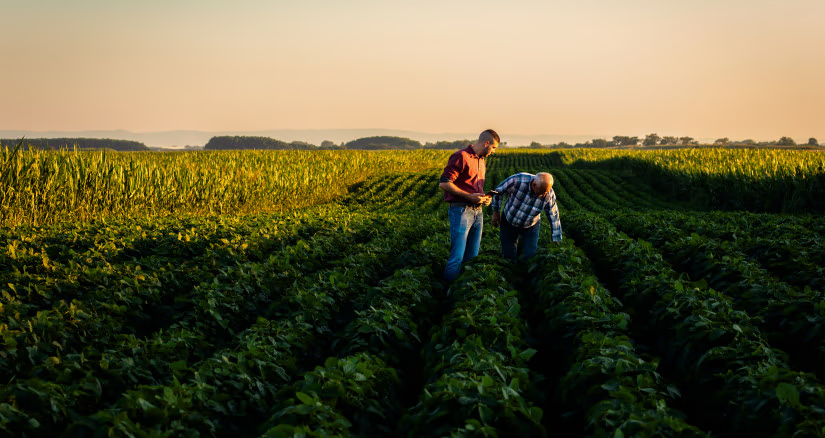 Market Information
Market Information
5+ MIN
18/07/2025
USDA Moves to Rescind Organic Pet Food Standards Just Months After Adoption
Less than six months later on May 12, 2025, the agency issued a Notice of Proposed Rulemaking to fully rescind the standard for mushrooms and pet food, citing efforts to reduce the regulatory burden for smaller certifiers and producers. This proposal has been ill-received by industry stakeholders and consumers alike, with many claiming that market development of organic mushroom and pet food products would suffer.
The term 'organic' carries some scrutiny among consumers, regardless of whether it's on a pet food package or a bundle of carrots. This is for good reason, as there have been several documented cases of organic certifiers validating operations that violated organic standards, going so far as to take money from agribusiness giants and concentrated animal feeding operations (CAFOs) to fudge certifications in their favor. One particularly public example was Jirah Milling, a Canadian grain exporter that was caught mixing non-organic grains with organic grains and selling the mixture as 'certified organic.'
Without a standard, what's stopping this from happening in pet food?
The Public Reacts
The Organic Trade Association (OTA) was one of the first to sound off in opposition to the proposed rescission, noting it was issued without insight from the National Organic Standards Board (NOSB), which is a Congressional entity put in place to ensure industry voices are heard in conversations about organic standards, as well as to promote standards transparency.
'This departure from established protocol threatens to undermine stakeholder trust and the integrity of the organic regulatory process while also setting a troubling precedent,' the OTA stated in its press release.
The Pet Sustainability Coalition took up the mantel for organic proponents in the pet industry, stating, 'Rescinding the rule would reverse years of progress, increase regulatory confusion, and harm small businesses, processors, and pet food companies working to meet growing consumer demand for organic options.'
The public also expressed its concern through more than 9,800 comments received during a public comment period which ended June 11.
'If adopted, this rollback would result in organic pet food being regulated under the same standards as livestock feed. This is fundamentally inappropriate. Pets are not livestock—they are family members,' said one commenter.
'Organic pet food deserves regulations that reflect its intended purpose—feeding pets safely—not loopholes that compromise quality and trust,' another commenter posted.
'Our pets deserve better,' added another.
On the surface, these concerns stem from regulatory uncertainty and the negative impacts that come with it, but at their core, they're really about preserving consumer trust and pet health.
Understanding Demand for Organic
Clearly, regulatory rollbacks and inconsistent enforcement pose a risk to organic demand as a whole. But just how strong is this demand in the first place?
In 2022, organic products accounted for roughly 6% of total human food sales in the United States, according to data from Euromonitor International. This represents a mere 1% increase from 2015, when organic product sales made up 5% of total food sales. This slow growth begs the question—is the demand really there?
Organic pet food sales, however, seem to be outpacing overall organic food sales. Organic pet food products saw high single-digit annual sales growth over the last five years, according to data from Future Market Insights Inc., driven largely by trends toward humanization and increasing interest in functional, sustainable pet food products.
However, inflation and economic uncertainty are a sticking point for pet nutrition, and organic pet nutrition is no exception. Competing claims like 'regenerative,' 'local,' and 'carbon-neutral' could be fragmenting consumer trust and attention, and removing the official standard for organic labeling would only make matters worse.
Further, in the eyes of consumers, organic claims are certainly subject to greenwashing accusations, which serve to undermine the growth of this category as a whole. Third-party certifying bodies tend to vary in their defined standards and requirements when vetting suppliers and brands against organic claims. This makes it easier for brands to overstate their organic positioning and could lead to greenwashing—and the quick devolution of consumer trust in this category.
If the pet industry—inclusive of growers, ingredient suppliers, manufacturers, brands, retailers, and pet parents—want to keep organic pet food on the table, it is imperative to establish regulatory standards that streamline certifications and clarify producer requirements, both of which would support consumer trust in organic label claims.
What Now?
The USDA's public commentary period ended June 11 and the organization is now reviewing submissions to help guide its decision-making process. However, the wheels of government turn slowly, and it could be several months before the USDA releases a decision to either uphold the current standard, refine it, or rescind it entirely.
While organic pet food producers are stuck in a holding pattern, taking a 'wait and see' approach to brand strategy could put you behind the ball. You can monitor this docket for updates as this story develops, but better yet, now is the time to start educating your consumers about the importance of organic standards and how your brand will maintain claim integrity in the potential absence of this standard. If your business relies heavily on organic claims, it could be useful to discuss differentiation strategies to ensure your brand is meeting demand where it wants to be met.
BSM Partners' expert team is perfectly positioned to help brands navigate new regulatory uncertainties and shifts like this one. Our Nutrition and Innovation practice can formulate and reformulate to meet evolving consumer needs and expectations, as well as provide claim substantiation guidance to ensure nobody can poke holes in your labels. Additionally, our Branding, Strategy, and Marketing (BSM2) practice, led by Michael Johnson, can help you build your brand with the right pet owners, in the right retail channels, and with the right messages.
In a market where trust is currency, the rollback of formal organic standards for pet food creates more questions than it answers. Will your brand be seen as an organic leader that upholds integrity, or will it be lost in the fog of vague claims and fractured credibility? The future of organic pet food depends on our ability to bake trust into the claim, and without a clear set of standards to level the playing field for certifiers and producers, brands must lead the charge with transparency, credibility, and consumer education. If we fail, the organic label won't disappear overnight—it will simply fade into irrelevance.
About the Author
Jordan Tyler is the Director of Media at BSM Partners and co-host of the Barking Mad podcast. She has more than five years of experience reporting on trends, best practices and developments in the North American pet nutrition industry. Jordan resides in Bentonville, Arkansas, with her husband and their four furry family members.
By Jordan Tyler
Source: BSM Partners
 Market Information
Market Information
3+ MIN
17/07/2025
Data insight: 2025 pet parenthood costs in the US
The cost of pet ownership is under pressure due to inflation and tariff risk, with pet parents facing significant price rises.
According to a survey of 1,000 US cat and dog owners by online pet marketplace Rover, the cost of treats, chews, grooming and pet cleaning supplies has spiked in the last year.
Lifetime costs
Over the average lifetime for a dog (10 years), the cost of ownership in 2025 is approximately $34,550 (€32K), up as much as 7% from the previous year. For cats with an average lifespan of 16 years, the cost of $32,170 (€30K) may add up to 10% to their total expenses.
However, the averages mask significantly higher costs for larger breeds or pets that exceed the typical lifespan. This can take the lifetime cost of dog ownership to more than $52,000 (€48K) and to above $61,500 (€57K) for a cat.
Tariff risk
Given the current headline-grabbing economic and geopolitical concerns, almost half of respondents expressed concern about the rising costs of being a pet parent, with more than half worried that tariffs will exacerbate this. 3 in 10 fears not being able to afford the items their pet needs right now.
While the cost-of-living crisis has impacted most areas of consumers' budgets, the survey reveals that 31% of participants feel that pet supply costs have increased more than other household or personal care products.
According to Rover's research, pet cleaning supplies (+183%), chews and treats (83%), grooming supplies (+20%) and veterinary fees (+11%) are among the costs set to rise this year.
Tight budgets
Rover's True Cost of Pet Parenthood Report found that 69% of pet parents' budgets were spent on pet food and treats.
But with such a strong commitment to their pets, a third of respondents have cut back on their own groceries or entertainment to prioritize spending on their pets, and a similar percentage say that pet spending is one of the last items they would cut if budgets were tight.
A quarter of pet parents have sought more affordable pet food or pet care, although most (68%) are keen to provide their pets with products and services comparable in quality to those purchased for themselves or loved ones.
However, prospective pet parents should be realistic about the costs involved and perhaps have an emergency fund to meet unexpected expenses, such as vet fees.
When it comes to choosing a pet, pet parents say factors like size (52%), breed (52%) and cost (35%) had an impact on deciding which pet to bring home.
Upfront costs
There is also the upfront cost, although the survey reveals this as one area where there has been some easing. In 2025, bringing a dog home can range from $1,150 (€1.1K) to $4,420 (€4.1K), and a new cat can cost between $750 (€695) and $2,715 (€2.5K), although this is likely due to a reduction in adoption rates.
Welcoming a new dog into the family from an adoption center costs 19% less this year than in 2024, while a cat is 16% less.
Around half of the survey respondents said the cost of bringing a pet home was within their budget, 27% said it was higher than expected and 21% found it to be lower.
Source: GlobalPets
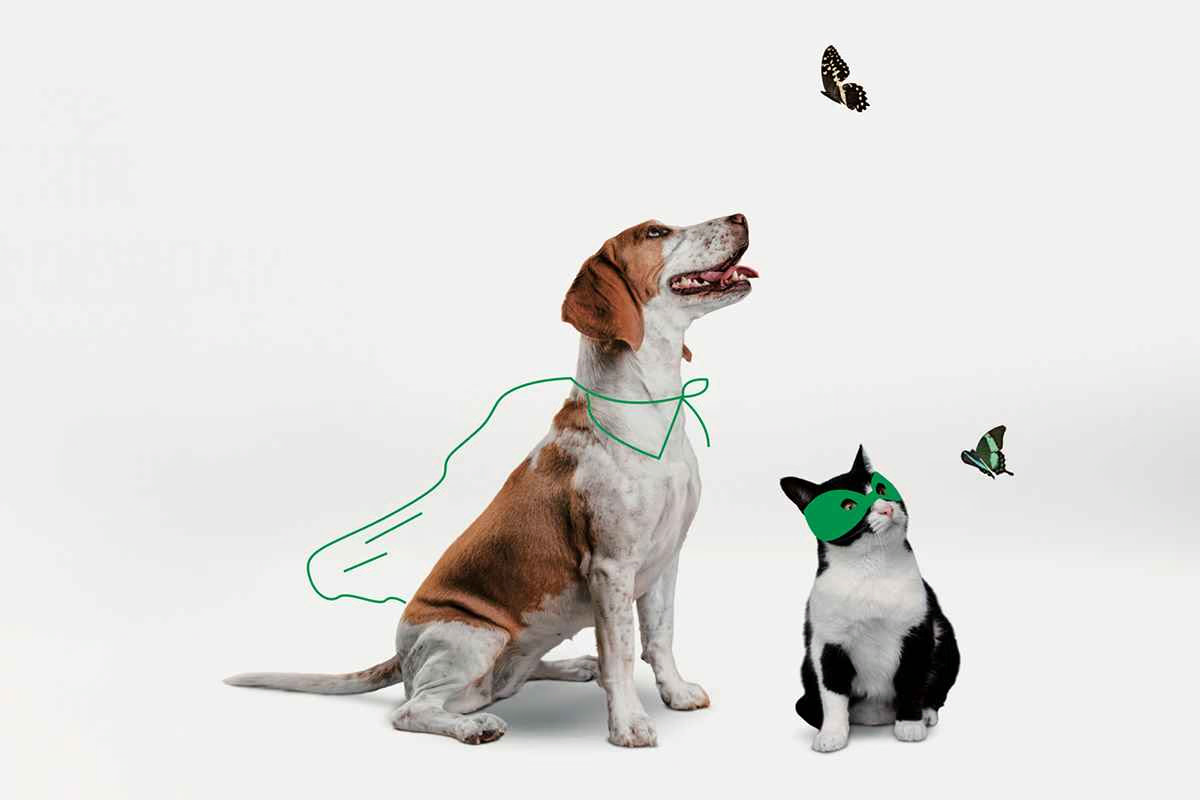 Sustainability
Sustainability
2+ MIN
16/07/2025
Por Candela Bonaura
Feed but Do Not Forget – Maintaining the Environment
Pet food manufacturing companies put effort and money into achieving a neutral carbon footprint, promoting sustainable plastic usage, improving raw materials use, and saving energy, among other practices. However, which role do vets and owners play in the care of the environment?
Both pet nutrition and human feeding are important in environmental conservation. Companies should consider specific plans that identify their carbon footprint and launch concrete projects and actions. Everyone should have a positive attitude when caring about the environment, and we must raise awareness. As companies must inform owners about their sustainability plans, veterinarians must contribute.
What is the Carbon Footprint?
The carbon footprint is the amount of greenhouse gases that people, companies, cities, or products produce directly or indirectly. CO2 enters the atmosphere through different activities and has an environmental impact.
The specific environmental impact that each dog and cat, along with their owners, has not been studied, but we can build habits to minimize this.
How to collaborate with the environment and its care:
Choose food whose process is more sustainable (sustainable raw materials with optimized process, use of renewable energy, etc.). A clear example is the use of animal by-products or meat cuts that humans cannot consume because of cultural matters or visual qualities.
Optimize pet food portions to reduce waste.
Recycle correctly.
Give a second opportunity to pet accessories.
On the other hand, pet food packs, bags, and packaging not only preserve food quality but also give information. Today, the aim is for them to be eco-friendly by their material or be recyclable/reusable. When choosing or recommending pet food, look at the information in the packaging to know how environmentally friendly the food is.
So, what is Sustainability?
Sustainability is 'the capability of society to use resources responsibly and consciously, avoiding the waste and environmental damage during the process.' In that way, we are all responsible for sustainability.
To conclude, everyone takes part in the pet world. From our role, we are responsible for having big sustainable plans like companies or improving daily actions as people who care about companion animals' health or have a pet as a family member.
By Dr. Bonaura, M. Candela
Source: All Pet Food Magazine
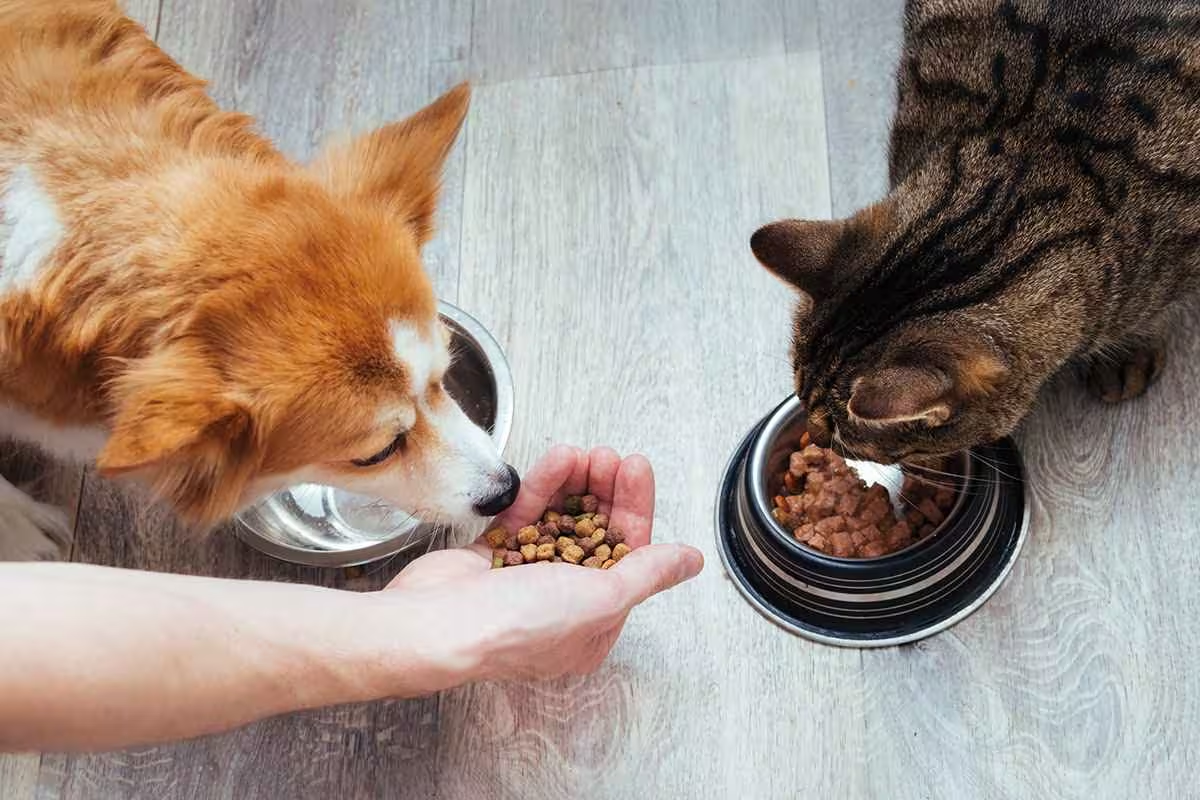 Nutrition
Nutrition
3+ MIN
15/07/2025
Innovation and Quality in Animal Nutrition: Grupo Harmony’s Commitment to the Premium Segment
A Comprehensive Vision for Animal Nutrition
The pet food segment has evolved significantly, driven by consumers seeking healthier, more functional options that align with the overall well-being of their pets. In this context, we operate with a philosophy centered on quality, innovation, and customization, adapting to market trends and meeting the specific needs of our customers.
Our commitment is clear: to provide nutritional and flavor solutions for premium and super-premium pet food, focusing on high-value ingredients that offer tangible health benefits for animals.
Animal Nutrition: More than Food, a Path to Well-Being
Animal nutrition has gone beyond simple feeding —it is now a crucial element in ensuring pet health and well-being. Today, pet owners seek balanced formulations with functional benefits that enhance the quality of life of their companion animals.
At Grupo Harmony, we work with ingredients designed to optimize the nutritional and sensory quality of pet food, ensuring both palatability and functionality. Our portfolio for the pet food industry includes key ingredients that set products apart in the market:
Salmon meal – A highly digestible, high-quality protein source that provides essential fatty acids, supporting muscle development, coat shine, and joint health in dogs and cats.
Salmon oil – Rich in omega-3 (EPA and DHA), a key ingredient for cardiovascular health, cognitive development, and reducing inflammation in pets of all ages.
Lactium® – A natural bioactive ingredient derived from milk protein, recognized for its calming properties and ability to reduce animal stress, ideal for pets with anxiety or high sensitivity to stress.
These ingredients not only improve the nutritional profile of pet food but also meet the growing demand for products that combine health, well-being, and an enjoyable sensory experience.
Pet Food Trends: What Consumers Are Looking For
The rapid growth of the premium and super-premium pet food market is driven by evolving consumer expectations. Key industry trends include:
High-quality proteins: Pet owners prioritize complete and highly bioavailable protein sources to support optimal nutrition and development.
Holistic health approach: Pet food is no longer just about basic nutrition; it includes functional benefits like immune support, digestive health, and cognitive reinforcement.
Functional ingredients: The demand for essential fatty acids, natural antioxidants, and adaptogens is on the rise as they contribute to pets' longevity and overall well-being.
Natural and transparent labeling: The shift towards clean-label products has increased significantly, pushing brands to reformulate without unnecessary additives, using traceable and sustainable ingredients.
Commitment to Quality and Sustainability
At Grupo Harmony, quality and sustainability are fundamental pillars of our business. We operate under strict control standards to ensure the safety and traceability of every ingredient we supply.
Our approach is based on:
Continuous market monitoring: We anticipate trends and regulatory changes to ensure our ingredients align with industry demands.
Flexible and customized solutions: We understand that one-size-fits-all solutions do not exist. Each client and formulation is unique, and we tailor our products to meet specific project needs.
Sustainability in the industry: We prioritize responsibly sourced ingredients, aligning with circular economy principles and sustainable practices that reduce environmental impact.
This commitment is reflected in our international certifications and our partnerships with reliable suppliers who share our vision for excellence and responsibility.
Your Partner in Animal Nutrition Product Development
In a rapidly evolving market, differentiation is key. At Grupo Harmony, we leverage our expertise, industry knowledge, and extensive distribution network to support clients at every stage of their product development journey.
From ingredient selection to final formulation, we offer a holistic approach based on quality and innovation. Our mission is to continue being a strategic partner for brands looking to stand out in the premium and super-premium pet food segment.
If you are looking for high-value ingredients to elevate your pet food product line, contact us. We are ready to collaborate and develop together the next generation of animal nutrition products.
By Grupo Harmony
Source: All Pet Food Magazine
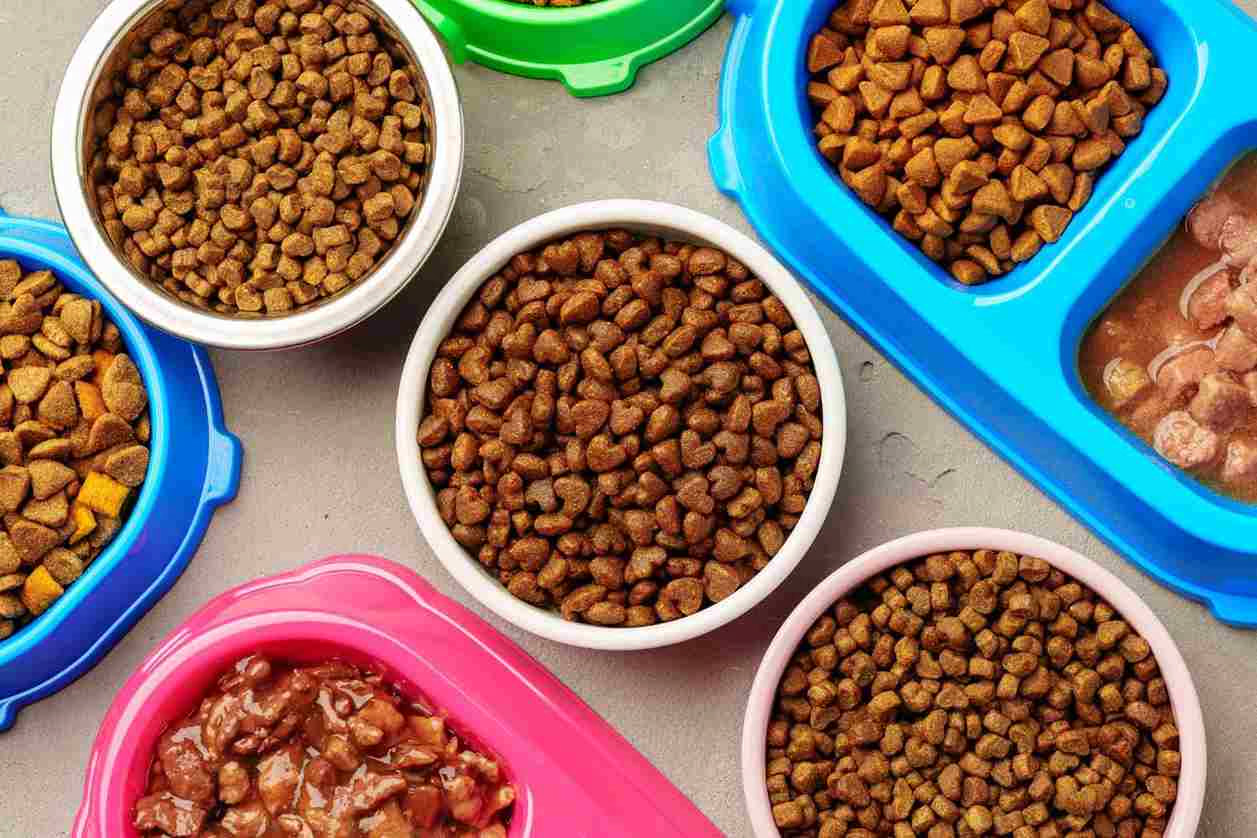 Other microingredients
Other microingredients
4+ MIN
11/07/2025
A to Z of Pet Food: Oils & Omegas
What are Omegas?
Omega fatty acids are an important component of dietary fats, or oils, that can have a number of benefits for dogs and cats. Certain fatty acids, such as linoleic acid (an Omega-6) and docosahexaenoic acid (DHA, an Omega-3), are considered essential because dogs and cats cannot synthesize them in sufficient quantities to meet their physiological needs. Therefore, these fatty acids must be obtained through the diet. Other Omegas, like Omega-9s, are not essential because pets can synthesize them internally. While Omega fatty acids play a role in maintaining overall health, their primary benefits include managing inflammation, supporting heart function, and promoting skin and coat health.
What are the sources of Omegas?
Omega fatty acids are found in various oils and fats. Some of the most well-known sources of Omega-3s are marine oils, like fish oils or microalgae oil, which provide direct sources of EPA and DHA. Plant-based oils like flaxseed oil contain alpha-linolenic acid (ALA), a precursor to EPA and DHA, though dogs and cats convert ALA inefficiently. Omega-6s are abundant in chicken fat and plant-based oils such as safflower and sunflower oil. There are also a number of pet supplements on the market that combine several oils to provide all of the Omega fatty acids in a convenient format, like a liquid or a chew.
What are the benefits of Omegas?
Each of the Omega fatty acids has unique benefits, and they all work together in delicate balance to support whole body health. Omega-3s promote healing and tissue repair, support nerve and brain protection and joint health, and help mitigate excessive immune response. Omega-6s like linoleic acid are vital for production of ceramide, which reduces dander, and formation of cell membranes. In the right ratio, Omega-3s and certain Omega-6s work in tandem to incite a proper immune response that identifies damage, heals it, and recedes when its job is done – this is how the Omegas work together to promote skin and coat health.
Does my pet need more Omegas in their diet?
It's important to note that true deficiencies in fat and fatty acids are rare, since commercial pet foods must meet nutritional guidelines in order to be labeled as 'complete and balanced'. However, once the minimum amount is met, dog and cat foods can vary widely in their fatty acid content based on a number of factors including total fat content and fat sources. Omega fatty acids may help with a number of issues your pet might face, like dry and itchy skin or joint stiffness. It's always a good idea to check with your veterinarian to determine if changing your pet's food or adding a supplement like an oil is a good plan for your pet as an individual. Choosing a high-quality source of Omega-3s and ensuring a balanced ratio of Omega-6s can optimize the health benefits without causing unintended imbalances in the diet.
References
Scarlett Burron, Taylor Richards, Giovane Krebs, Luciano Trevizan, Alexandra Rankovic, Samantha Hartwig, Wendy Pearson, David W L Ma, Anna K Shoveller, The balance of n-6 and n-3 fatty acids in canine, feline, and equine nutrition: exploring sources and the significance of alpha-linolenic acid, Journal of Animal Science, Volume 102, 2024, skae143, https://doi.org/10.1093/jas/skae143
Sakai C, Ishida M, Ohba H, Yamashita H, Uchida H, et al. (2017) Fish oil omega-3 polyunsaturated fatty acids attenuate oxidative stress-induced DNA damage in vascular endothelial cells. PLOS ONE 12(11): e0187934. https://doi.org/10.1371/journal.pone.0187934
Mostofsky, D. I., Yehuda, S., & Salem, N. (2001). Fatty acids : physiological and behavioral functions. Humana Press.
Lascelles, B.D.X., DePuy, V., Thomson, A., Hansen, B., Marcellin-Little, D.J., Biourge, V. and Bauer, J.E. (2010), Evaluation of a Therapeutic Diet for Feline Degenerative Joint Disease. Journal of Veterinary Internal Medicine, 24: 487-495. https://doi.org/10.1111/j.1939-1676.2010.0495.x
VAUGHN, D.M., REINHART, G.A., SWAIM, S.F., LAUTEN, S.D., GARNER, C.A., BOUDREAUX, M.K., SPANO, J.S., HOFFMAN, C.E. and CONNER, B. (1994), Evaluation of Effects of Dietary n-6 to n-3 Fatty Acid Ratios on Leukotriene B Synthesis in Dog Skin and Neutrophils. Veterinary Dermatology, 5: 163-173. https://doi.org/10.1111/j.1365-3164.1994.tb00028.x
Rosemary C. Wander, Jean A. Hall, Joseph L. Gradin, Shi-Hua Du, Dennis E. Jewell, The Ratio of Dietary (n-6) to (n-3) Fatty Acids Influences Immune System Function, Eicosanoid Metabolism, Lipid Peroxidation and Vitamin E Status in Aged Dogs, The Journal of Nutrition, Volume 127, Issue 6, 1997, Pages 1198-1205, ISSN 0022-3166, https://doi.org/10.1093/jn/127.6.1198.
Medeiros-de-Moraes IM, Gonçalves-de-Albuquerque CF, Kurz ARM, Oliveira FMJ, de Abreu VHP, Torres RC, Carvalho VF, Estato V, Bozza PT, Sperandio M, de Castro-Faria-Neto HC, Silva AR. Omega-9 Oleic Acid, the Main Compound of Olive Oil, Mitigates Inflammation during Experimental Sepsis. Oxid Med Cell Longev. 2018 Nov 13;2018:6053492. doi: 10.1155/2018/6053492. PMID: 30538802; PMCID: PMC6260523.
Omer M, Ali H, Orlovskaya N, Ballesteros A, Cheong VS, Martyniak K, Wei F, Collins BE, Yarmolenko SN, Asiatico J, Kinzel M, Ngo C, Sankar J, Calder A, Gilbertson T, Meckmongkol T, Ghosh R, Coathup M. Omega-9 Modifies Viscoelasticity and Augments Bone Strength and Architecture in a High-Fat Diet-Fed Murine Model. Nutrients. 2022 Jul 31;14(15):3165. doi: 10.3390/nu14153165. PMID: 35956341; PMCID: PMC9370223.
Lenox, C. E. (2015). Timely Topics in Nutrition: An overview of fatty acids in companion animal medicine. Journal of the American Veterinary Medical Association, 246(11), 1198-1202. Retrieved Mar 7, 2025, from https://doi.org/10.2460/javma.246.11.1198
K. R. Kerr, B. M. Vester Boler, C. L. Morris, K. J. Liu, K. S. Swanson, Apparent total tract energy and macronutrient digestibility and fecal fermentative end-product concentrations of domestic cats fed extruded, beef-based, and cooked beef-based diets, Journal of Animal Science, Volume 90, Issue 2, February 2012, Pages 515–522, https://doi.org/10.2527/jas.2010-3266
Source: Pet Food Institute
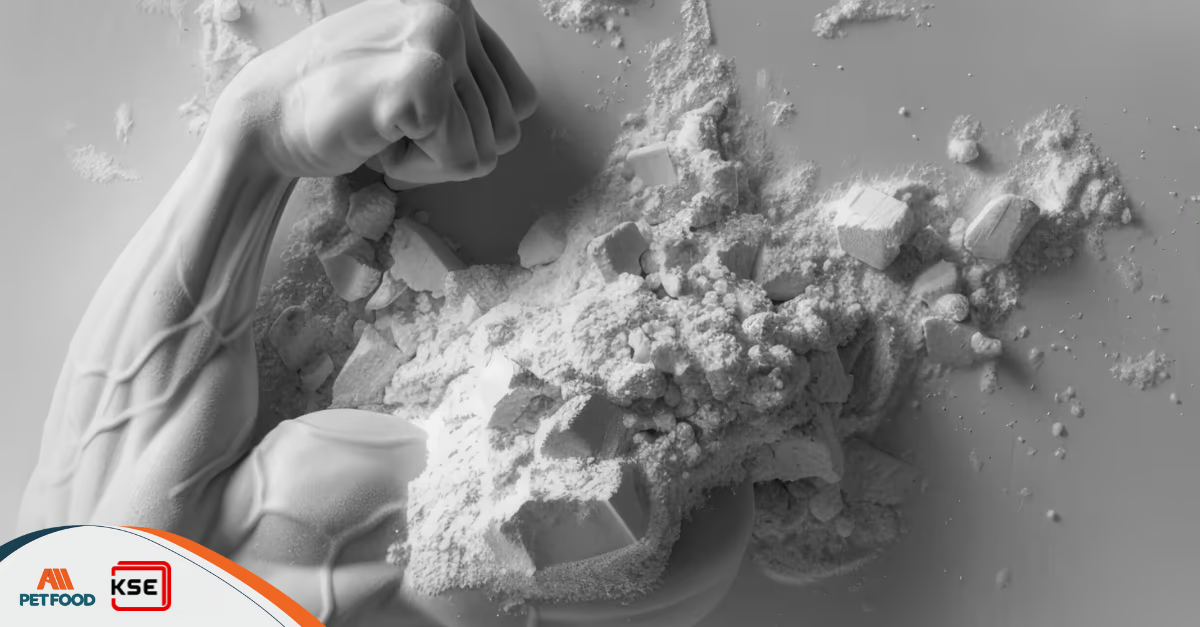 Dosing
Dosing
1+ MIN
10/07/2025
Challenges in Batching in Animal Nutrition Plants
Batching is a critical process in the manufacturing of animal nutrition, impacting product consistency, efficiency, cost management, and overall quality. A proper batching 'system' (or process) ensures that raw materials are combined in the correct proportions to produce consistent, high-quality products that meet industry standards and consumer expectations. This relates to collecting and weighing all bulk, major, micro and nano ingredients and mixing them until the mix is ready for the next steps in the process. In this whitepaper, you will learn: The Critical Role of Batching: Why batching is fundamental to consistent product quality, cost control, and operational efficiency in animal nutrition plants. Key Industry Challenges: Insights into ingredient variability, labor shortages, and manual errors that impact production in feed, pet food, and premix manufacturing. Automation and Smart Systems: How advanced batching systems, including feeders, weighers, and control software, improve accuracy, flexibility, and traceability. Best Practices for Optimization: Actionable strategies for reducing downtime, improving mixing efficiency, and maintaining compliance with regulatory standards. Cost of Poor Batching: A breakdown of the hidden costs - from waste and recalls to brand damage - and how proper systems mitigate these risks. Click here to download it Source: KSE Group
 Formulation
Formulation
5+ MIN
09/07/2025
Understanding Minimally Processed: What It Really Means for Your Pets Food
Processing simply means altering an ingredient's chemistry, structure, or safety profile. It can be as gentle as hydrating a pulse or fermenting kefir, or as intensive as retort canning. In other words, each processing step exists because it solves a specific problem, such as improving digestibility, extending shelf life, controlling pathogens, enhancing palatability, preserving texture, or maintaining color, often addressing multiple issues simultaneously.
The real question is how much processing is happening, why, and what does it mean for nutrition and safety?
Regulatory Definitions
There are currently no regulatory definitions for 'minimally or lightly processed,' 'gently cooked,' or even 'fresh' pet food established by the Association of American Feed Control Officials (AAFCO). The closest AAFCO definition pertains to the 'natural' claim, which allows for common heat or mechanical steps such as rendering, extrusion, purification, and fermentation. Even then, there is no use of the phrase 'minimally processed.'
However, the USDA's 'natural' claim states: 'A product containing no artificial ingredient or added color and is only minimally processed. Minimal processing means that the product was processed in a manner that does not fundamentally alter the product.' But there is no numerical cap for 'minimal.' The Food, Drug, and Cosmetic Act, established by the Food and Drug Administration (FDA), does not define 'minimally processed' either, and no temperature limits are specified.
Photo by Nadtochii
Enter NOVA System—Helpful Lens or Marketing Hammer?
In 2009, nutrition scientists at the University of São Paula proposed the NOVA classification system. This four-tiered system ranks foods by the extent and purpose of industrial processing. The tiers are as follows:
Group 1: Unprocessed/Minimally Processed—Edible parts of plants, animals, fungi, algae, or water used almost as found in nature, or altered only by basic preservation steps (washing, peeling, drying, chilling, freezing, pasteurizing, fermenting, etc.)
Group 2: Processed Culinary Ingredients—Substances extracted from Group 1 foods or nature (oils, butter, lard, sugar, honey, salt) via pressing, milling, refining, evaporating, or drying.
Group 3: Processed Foods—Group 1 foods modified by adding Group 2 ingredients (salt, oil, sugar) and/or by preservation or non-alcoholic fermentation; usually have 2–3 ingredients and remain recognizable as the original food.
Group 4: Ultra-Processed Foods—Industrial formulations made mostly or entirely from refined food fractions (starches, sugars, oils, proteins) plus additives that create colors, flavors, textures, or extend shelf-life; contain little if any intact whole food.
The model was never intended to regulate pet food; yet, the term 'ultra-processed' has been eagerly adopted by bloggers and marketers to cast conventional kibble as nutritionally suspect. The trouble is that NOVA's criteria focus on how a product is assembled, rather than whether it meets nutrient profiles, safety standards, or digestibility targets.
Here's the bottom line: NOVA does provide a consumer-friendly shorthand for human diets, but it isn't recognized by the FDA, USDA, or AAFCO, and can be misleading when pasted onto pet nutrition. So, when you see 'ultra-processed' used to dismiss a pet food, first ask: 'What nutrient, safety, or digestibility metric is actually falling short? Or is this just another buzzword trying to 'make fetch happen?''
Is 'Minimally/Lightly Processed' Automatically Better?
Again, it depends on the product's ultimate goal. Is it always better? No, not always. Less heat means fewer automatic kill steps for pathogen safety. In these cases, it is prudent to add a kill step. High-pressure processing (HPP) or steam pressurized pasteurization (SPP) are two methods that can be used to reduce microbial load. The major difference between the two is that HPP is technically a non-thermal process, while SPP relies on heat to inactivate microbes.
Certain ingredients, such as beans or potatoes, require processing to reduce anti-nutrient factors and enhance the digestibility of their starches. Without the appropriate process, there is an increased chance of your pet consuming an ingredient that is not healthy for them. On the other hand, ingredients that are not exposed to high levels of heat often have higher nutrient retention, albeit at the cost of increased retention of anti-nutrient factors.
Even the gentlest recipe requires a validated kill step. Whether a brand relies on HPP, SPP, or heat in extrusion or retort, the goal is the same: to achieve at least a 5-log reduction of pathogens such as Salmonella and Listeria without overcooking nutrients.
Bottom line, the degree of processing should not be on the product as a whole, but on the individual ingredients and what is appropriate from a safety and nutritional perspective.
Looking Ahead: How the PURR Act Could Bring Clarity
The Pet Food Uniform Regulatory Reform (PURR) Act of 2025, now pending before the House of Representatives, proposes a single federal standard for labeling dog and cat food. If passed, it offers a viable vehicle to define descriptors like lightly cooked, air-dried, and freeze-dried raw in measurable terms—think core temperature limits, required pathogen-reduction methods, and even minimum digestibility disclosures.
However, the proposed bill is not without its flaws, which BSM Partners has addressed in articles, 'Time for change: Addressing regulatory reform in pet food,' and, 'AAFCO: PURR Act Places Pet Food Transparency on the Chopping Block,' as well as in an episode of the Barking Mad podcast, 'Barking Up the Wrong Tree: How the PURR Act Could Undermine Pet Food Transparency and Safety'.
By checking the Federal Register and Regulations.gov, you can keep up to date on any scheduled public hearings or if there is an open comment period for the PURR Act. By participating in this process, brands can help ensure that "minimal processing" becomes a transparent promise backed by science, not just clever marketing copy.
Whether you're perfecting your recipe, validating a kill step, or trying to understand where your next opportunity is in the industry, our experts at BSM Partners specialize in audits that keep nutrition, safety, and regulatory compliance in balance, understand market trends, and formulate a nutritious formula for your desired format.
About the Author
Dr. Sydney McCauley is a Board-Certified Companion Animal Nutritionist and earned both her bachelor's and doctoral degrees at Virginia Tech in Animal and Poultry Sciences. McCauley's research was in nutritional physiology with a focus on understanding the effects of low birth weight on glucose, fatty acid, carbohydrate, and amino acid metabolism in skeletal muscle and overall metabolic homeostasis during neonatal development.
By Sydney McCauley
Source: BSM Partners
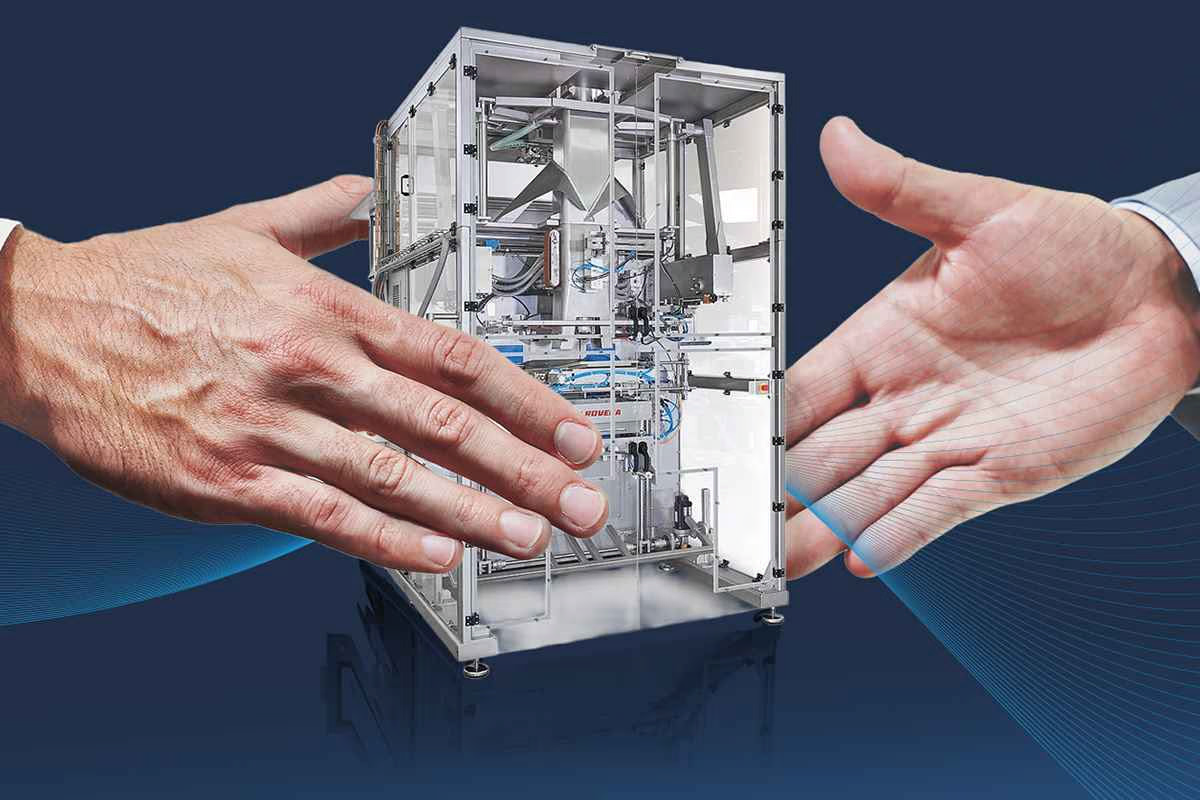 Packaging
Packaging
3+ MIN
08/07/2025
Sustainable Packaging: Innovation and Collaboration for a Greener Future
At Clivio Solutions, we believe in the importance of synergy between technology and materials to drive positive change in the industry. This is why we organized a coworking space with our partner, Rovema, and one of the world's leading chemical companies. During this meeting, we spoke with Guillermo Navarro, Sales Director for LATAM at Rovema, about how this alliance is driving the evolution of sustainable packaging.
Innovation in Materials and Technology: A Shared Challenge
Our first question to Guillermo was about the link between Rovema and the company, how the collaboration started, and the key aspects of this joint work:
"They contacted us because they had been working with their converters to develop a more recyclable solution (resin and film) for flexible packaging (bags), which is used in vertical form fill seal (VFFS) machines. The problem arose when they brought the solution and did not work on the customer's machine. Recyclable films have a smaller difference in the fusion points of the layers, which is why they require much more precise technologies to function properly. That's when they suggested including Rovema machines to offer customers a complete solution that includes the film, but also the machine that can process it."
Sustainability and Efficiency: Balancing the Variables
Sustainability in packaging is not just about recyclable materials but also about overall optimization. Guillermo explained how this alliance helps minimize environmental impact without compromising the final product quality:
"Many clients already have goals to reduce plastic in their packaging and make them more recyclable. This presents significant challenges because, like almost everything in the industry, when you move one variable, others are affected; everything is interconnected. By using recyclable film, you might sacrifice the film's protective barrier, mechanical strength, packaging speed, or seal integrity, to name just a few variables. With this alliance, we can work in a multidisciplinary way to maximize all variables to an acceptable point in the market, while also helping our clients achieve their sustainability goals."
Impact on the Pet Food Industry and the End Consumer
The pet food sector has specific packaging requirements, making it even more important to understand the impact of this collaboration on both manufacturers and the end consumer:
"Pet food requires a high barrier in the film (due to fat content), a reliable seal to prevent contamination, strong packaging (due to the weights handled), and excellent product presentation. With this collaboration, we aim to provide customers with all these characteristics, but in easily recyclable packaging."
Conclusion
Sustainability in the packaging industry depends not only on material innovation but also on technological evolution that allows for its proper application. The collaboration between Rovema and one of the world's leading chemical companies represents a major step toward integrating solutions that reduce environmental impact without compromising quality or production efficiency.
At Clivio Solutions, we continue to invest in developing strategic alliances that promote a more sustainable future for the industry. The evolution of sustainable packaging is a shared challenge, and we are committed to being an active part of this change.
Is sustainability a challenge at your plant? Contact us, and let's take the first step together.
By Clivio Solutions
Source: All Pet Food Magazine
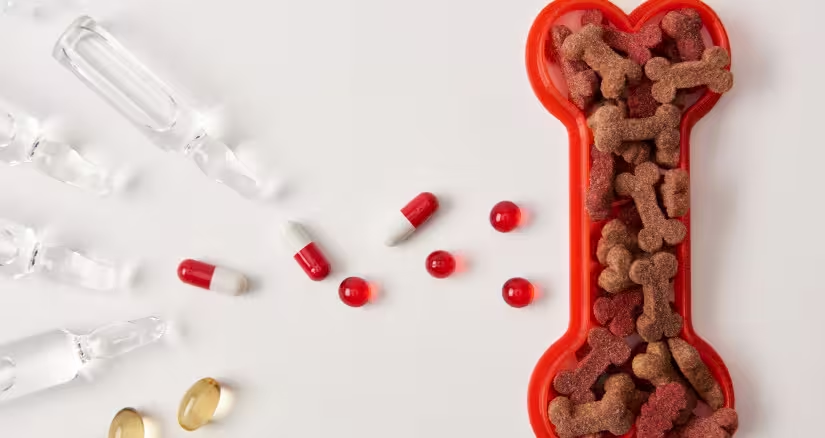 Formulation
Formulation
6+ MIN
07/07/2025
Pet Supplements: When Science, Cost, and Chews Collide
During those 11 years, I evaluated hundreds, possibly thousands, of products. Over and over, I saw the same issues: questionable scientific support, underdosed active ingredients, and formulations that just didn't deliver. As a veterinarian and consumer, it was perplexing. I remember thinking, 'How hard can it be to make a supplement that works?' You just find ingredients with solid science behind them, combine them into a formula, and voilà, a great supplement, right?
Then I joined BSM Partners and had the opportunity to develop my first veterinarian-formulated supplement. I was thrilled! This was the chance I had been waiting for—a chance to do it right. However, what became abundantly clear was that the roadblocks I had previously attributed to poor product development were not just isolated cases or evidence of carelessness. They were symptoms of deeper, industry-wide challenges that even the most seasoned professionals must navigate with care.
Step 1: Scientifically Backed Ingredients
Finding ingredients with strong, species-specific scientific support for safety and efficacy is the foundation for an efficacious product. Surprisingly, sometimes studies supporting the use of functional ingredients specifically for dogs and cats are scarce. While there is plenty of data from rodents and humans, the companion animal section is sparse. Then, when it's narrowed down to studies that include safety data or effective doses, the list shrinks dramatically for dogs and is almost nonexistent for cats.
This is an industry-wide limitation that product developers must contend with across the board. Does that mean a supplement is ineffective if there is no supporting data? Not necessarily. Formulators may often extrapolate from other species or use synergistic combinations at sub-efficacious levels. But when that approach is taken, validating the finished product through clinical testing is key, but that's where the industry often stumbles. Testing finished products for efficacy is arguably the most critical step in supplement development, and it is often skipped because it can be expensive, time-consuming, and a strain on resources. However, if you're not testing your product before it goes to market, you're essentially using customers' pets as test subjects.
Step 2: Making It Fit
Next is formulation. An ingredient with solid scientific backing still has to 'fit' within a chew or powder scoop, and that's where another layer of difficulty emerges. Many efficacious ingredients' research shows results at high inclusion rates —doses that simply don't fit in a chew or daily serving. For example, take fructooligosaccharides (FOS), which support digestive health, but the dose that actually works in dogs is far more than can be realistically delivered in a small, palatable chew.
Then there are cats —if finding data for dogs is hard, cat research is like finding water in the Sahara desert. When formulating for cats, the problem compounds: limited data, stricter palatability demands, and dosing constraints make feline supplements one of the most complex categories in the market. These are not niche concerns; they are fundamental limitations that affect nearly every company trying to build a meaningful product.
Step 3: Cost vs. Efficacy
Once a feasible ingredient is identified, it's time to calculate the cost. Here's the kicker: the best-supported ingredients—for example, postbiotics with species-specific clinical trials—can cost hundreds of dollars per kilogram. Delivering a daily dose at the study-supported level could cost the consumer $15 to $20 per day, which may not be economically viable for pet parents – especially in today's world. Companies face this dilemma: how to balance scientific rigor with cost-accessibility. It's a strategic, not just scientific, decision, and one that profoundly shapes the final product.
Step 4: Will It Even Work in Manufacturing?
Now, the ingredients that are efficacious, cost-effective enough, and fit into a chew or scoop have been identified. The next question: can it be manufactured? Sometimes, a last-minute consideration, but food science and formulation engineering are critical to the process. Some ingredients are incompatible or can be rendered ineffective with certain processing methods.
Step 5: The Marketing Reality Check
Next, customer perception is layered into the equation. For example, a novel ingredient with supporting evidence for efficacy has been identified. Is it familiar with pet parents? Do pet parents understand the connection between the ingredients and the functionality? Formulators must balance new, innovative active ingredients with those consumers know and love.
Step 6: Palatability Hurdle
The steps have been taken to create an effective supplement with evidence supporting claims, and consumer perception considered, it is time to tackle palatability. Creating a tasty product is where the rubber meets the road. If this supplement is perfect on paper, but if pets won't eat it, it might as well not exist.
Palatability isn't just a finishing touch; it's a gatekeeper. Texture, aroma, flavor profiles, and even how the product breaks apart in the mouth —all these things matter, especially for cats, who can be notoriously picky. A core formulation challenge faced by every brand is making something taste good to a dog or cat while preserving the stability of active ingredients; it is a whole science of its own!
For personal experience, when I finally finished formulating my first supplement, I felt like celebrating. Real-world experience taught me that reviewing supplements versus creating them is two separate beasts. Creating a supplement that delivers and that pets will willingly consume is harder—yet can be even more rewarding—than I ever imagined.
Step 7: Clinical Efficacy Testing
Here's the piece most often missing: does the final product actually work, and is it safe? Not the individual ingredients in isolation, but the fully formulated product in the chosen format (like a chew or powder). That's where clinical efficacy and safety testing come into the picture. This step validates whether the supplement delivers meaningful benefits in pets and whether the formulation is safe. It also helps uncover synergistic effects or limitations that cannot be predicted on paper. Unfortunately, few companies invest in this step, despite it being critical for establishing credibility and long-term success. At BSM Partners, we emphasize this phase because it closes the loop between formulation and function, allowing pet owners to truly trust that what they are purchasing is effective and safe.
So, How Do You Make a Good Supplement?
What I learned during this project at BSM Partners is that building a supplement that is safe, effective, manufacturable, and palatable is not simply a matter of good intentions or veterinary knowledge. It's an exercise in navigating a complex landscape of real-world tradeoffs that impact every brand in this space. These aren't just personal lessons; they are industry-wide realities that demand technical fluency, strategic restraint, and scientific integrity. That's what makes this work both challenging and deeply rewarding.
At BSM Partners, we bring all these elements together under one roof. Whether building a new supplement brand or refining an existing product line, we can help strike the balance between scientific integrity, practical formulation, and consumer appeal. It's not easy, but when done right, it's worth it.
About the Author
Dr. Katy Miller works as the Director of Veterinary Services at BSM Partners. She earned her veterinary degree at Ross University and completed her clinical year at Louisiana State University. She previously served for 11 years as the Director of Dog and Cat Health and Nutrition for Mud Bay where she earned multiple certifications and specialized in pet food nutriton, prior to which she practiced general and emergency medicine for seven years. She is also a competitive three-day eventer, licensed falconer, and claims only two (Golden and Mini Doxie) of their nine dogs.
By Katy Miller
Source: BSM Partners
 Market Information
Market Information
3+ MIN
04/07/2025
Spending under pressure: US pet parents trade down on food and vet visits
With household budgets in the US under pressure, the country's 94 million pet parents appear to be making cuts to their spending on pet food and veterinary services.
The cost of living in the United States has been rising steadily in recent years. The latest data from the US Bureau of Labor Statistics (BLS) show that the consumer price index rose 2.3% in the 12 months to April 2025, the smallest increase in more than 3 years, but still above the Federal Reserve's preferred 2% level.
High inflation in vet
A new report from the Bank of America Institute (BofA) analyzes current consumer spending and inflation data, finding that pet food inflation is near zero, having peaked at nearly 16% in 2022–2023. However, inflation for pet services, including vets, while rising to less than 12% in recent years, remains relatively high at 4.6%.
The cost of pet services has increased by 42% since 2019, compared to a 22% rise in the price of pet food and treats over the same period.
Examining BofA's debit and credit card data, spending at pet stores (down approximately 4% year-over-year in April) and direct veterinary spending (down 1%) is running below inflation rates.
This suggests that American pet parents may be trading down to purchases in grocery stores while growing levels of pet insurance (up 20% since 2020, according to the North American Pet Health Insurance Association) may be reducing direct vet services spending.
Demographic differences
According to the BofA report, lower-income millennial households are showing the largest pull-back in pet spending (around 5%) compared to better-off pet parents in this cohort and both lower- and higher-income consumers in older generations.
Spending in pet stores and on pet care services is significantly higher in Seattle and San Francisco (30% more than the US average), followed by New York, San Diego and Boston (all around 15% higher than the US average).
Spending in San Antonio, St Louis and Atlanta is all well below the US average by almost 20%.
Cost decisions
A recent survey by consumer analytics platform CivicScience of 400 pet parents reveals that 32% of respondents report a time in the last 6 months when they were unable to take their pet to the vet due to prohibitive costs.
The data also shows that cost is the top factor influencing consumers' pet spending choices, increasing 4 percentage points to 50% in 2025 compared to 2 years earlier, while 'healthy choice' slips back 1 point to 49%, taking second place.
Safety (37%), vet recommendation (35%), convenience (29%), friend or family recommendation (27%), pet store displays or assistance (12%), and advertising or media recommendation (11%) are all relatively stable.
Premium choices
A separate study from academics at the University of Arkansas has considered the factors that drive pet parents to pay a premium price for pet food.
Some health-related claims are associated with significant price premiums, while price discounts accompany others or show no significant effect.
The highest price premium is for allergy relief products (17.8%) and sensitive digestion (3.8%), indicating potential in combining these premium attributes.
Price discounts are associated with immune support (-2.7%) and dental breath care (-7.4%), and these features may no longer serve as compelling premium differentiators, potentially necessitating bundling with other higher-value attributes.
'Premium' labeled products and those with claims like non-GMO or chicken-free command significantly higher prices, while those labeled 'with grain' and those with chicken as a primary flavor are associated with discounts.
Source: GlobalPets
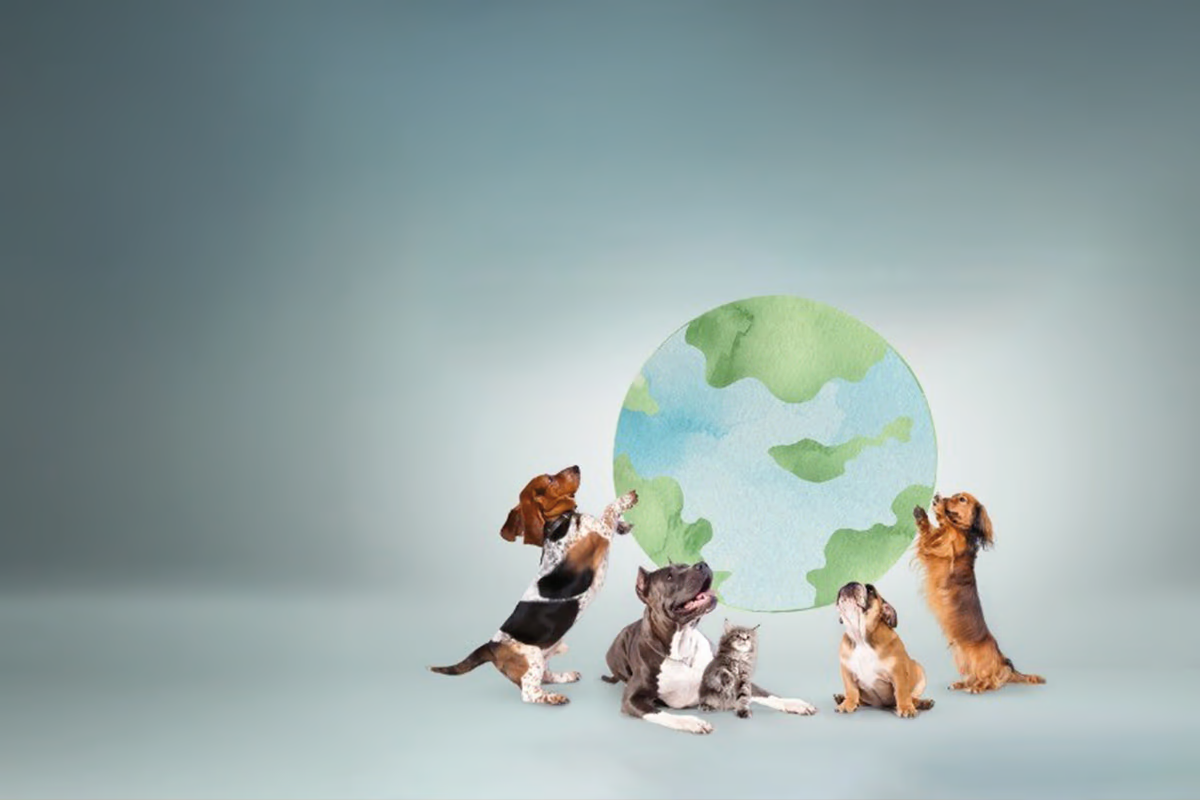 Other microingredients
Other microingredients
4+ MIN
02/07/2025
Por Armando Enriquez de la Fuente Blanquet
The Use of Sustainable Micro-ingredients
In 1987, the United Nations Brundtland Commission defined sustainability as 'meeting the needs of the present without compromising the ability of future generations to meet their own needs'. Using sustainable micro-ingredients in pet food is becoming increasingly important, especially when concerns about environmental impact, plastic waste, and global sustainability gain relevance. In this way, micro-ingredients refer to small quantities of nutritional components that improve pet health, e.g., vitamins, trace minerals, amino acids, and other bioactive additives. Trace minerals are essential for pets and are required in small quantities. The sources of these nutrients vary in bioavailability, which means that less bioavailable sources (inorganic minerals) are more excreted in feces than those with more bioavailability (organic minerals). Moreover, some organic sources are in chelated amino acids, such as HMTBa (methionine hydroxy analog); besides providing copper, zinc, or manganese value, it will have an HMTBa value, which makes it a 100% usable ingredient with little or no excretion of metal or any other component into the environment. Here are some key ideas about how sustainable ingredients influence pet food: Replace Traditional Ingredients with Sustainable Sources Traditional ingredients in pet food, like animal proteins, have a significant environmental burden, so manufacturers are choosing more sustainable sources, such as insects, algae, or plants (such as pea plants, quinoa, or brown rice) proteins since they have less environmental impact in terms of soil, water, and CO2. There are micro-ingredients obtained from sustainable sources that also improve pet nutrition, for example: Insect proteins: They are a source rich in essential amino acids and fatty acids, which require fewer resources to be produced in traditional animal meat. DHA marine algae origin: They are a natural source of DHA omega 3 fatty acids and other essential nutrients and have a low carbon footprint. Vitamins and synthetic amino acids: Its production meets environmental regulations and reduces (in a small percentage) the carbon footprint of pet food. Chelated minerals: Trace minerals can be combined with amino acids and other compounds to make chelated, which improves absorption and bioavailability in the companion animal digestive systems. Incorporating these micro-ingredients is more sustainable and offers nutritional benefits, for example a better balance in pet diets. Recycling Technologies for Ingredients In the plastic era, in which recycling and reusing are essential, pet food companies are experimenting with recycled ingredients and technologies that allow the recovery and reusing of human feed by-products. This reduces the need to remove new resources and minimize waste. Agriculture by-products: Some pet food ingredients come from the agricultural by-products industry, such as fruit and vegetable peels, which are rich in fibers and antioxidants. Challenges of Plastic and Packaging Pet food packaging plays a vital role in preserving food, especially micro-ingredients. Usually, it implies the use of non-biodegradable plastics. However, the industry is evolving in terms of research and development of sustainable packaging. Biodegradable or compostable plastics: Many manufacturers choose environmentally friendly packaging, i.e., those made of compostable or biodegradable materials, such as corn starch and bioplastics obtained from plants. Plastic reduction in packaging: A growing trend is to reduce plastics in packaging by using recycled packaging or facilitating its recycling. Transparency in the Supply Chain As the demand for sustainable products grows, so too the need for transparency in the supply chain. Consumers seek brands that offer clear information about the origin and manufacturing of ingredients. Environmental certification and ingredient traceability are increasingly more common, allowing consumers to make informed decisions about their pet products. This is not only about ingredients but also the environmental impact of manufacturing and packaging. Benefits in Animal Health Using sustainable micro-ingredients can also benefit pet and human health. Ingredients rich in vitamins, trace minerals, antioxidants, healthy fats, and essential nutrients can enhance their quality of life while reducing the ecological impact. Innovation and Regulation As advancements in food science and biotechnology continue, micro-ingredients from alternative biological sources can be at the vanguard of industry change. It also means regulatory challenges regarding security, labeling, and approval of new ingredients in the international market. Conclusion Using sustainable micro-ingredients in the pet food industry is an excellent way to reduce the environmental impact, especially in a world full of plastic and ecological concerns. Companies are incorporating technological innovations and more responsible ingredients to offer more nutritious and environmentally friendly products. However, this change requires a continuous commitment to research, development, and transparency in each stage of the manufacturing process. This approach addresses consumers' growing demand for sustainable products. It is also an opportunity for pet food brands to play an important role in the global environmental struggle. By MVZ Armando Enriquez de la Fuente Blanquet Source: All Pet Food
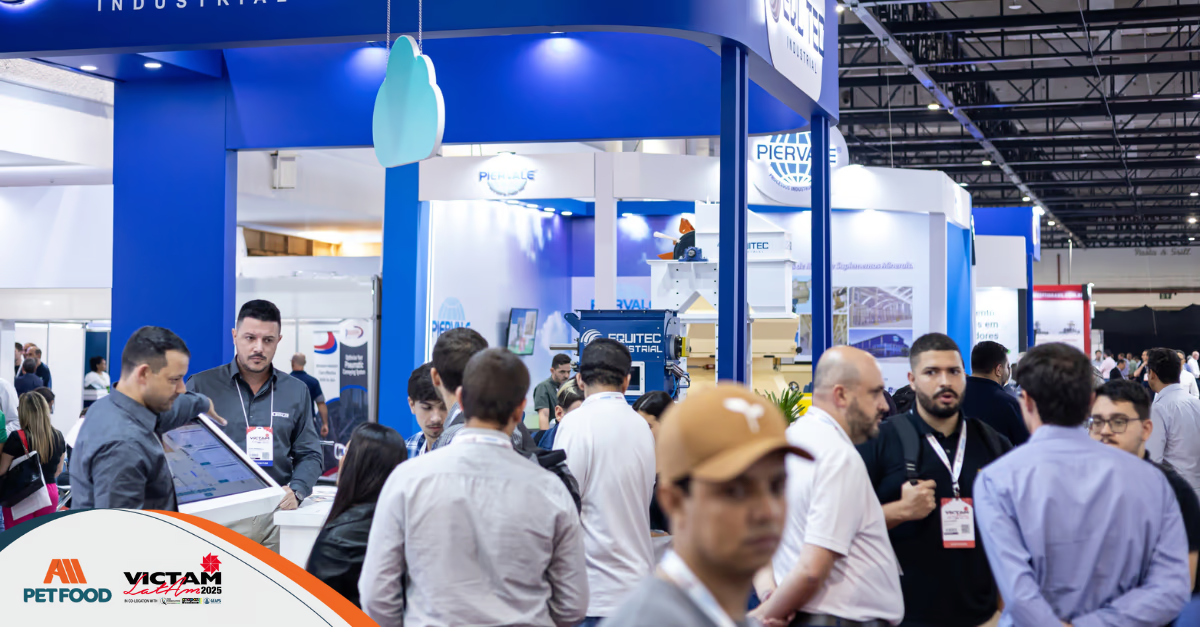 Market Information
Market Information
2+ MIN
01/07/2025
VICTAM LatAm 2025: Latin America Leading Event for Animal Feed and Pet Food Processing Professionals
VICTAM LatAm 2025, taking place from 16–18 September at Expo Center Norte in São Paulo, Brazil, will once again bring together professionals from across the animal nutrition and feed technology industries. From pet food to aquafeed, from raw materials to formulation and processing, this event is the gateway to the Latin American market.
Latin America plays a key role in global animal feed production, driven by its output of 23% of the world's beef and 21% of poultry. As demand grows for more efficient and sustainable feed solutions, the region is becoming a hotspot for innovation and investment. VICTAM LatAm directly supports this growth by offering a targeted platform where over 250 exhibitors present the latest in feed ingredients, additives, processing technology, automation, and formulation tools for the evolving feed industry.
Co-located with Feed Formulation Latin America, the event also features a strong content program aimed at professionals in R&D, nutrition, and formulation. Topics will include pet food innovation, aquaculture nutrition, alternative proteins, regulations, and sustainable formulation strategies. Visitors can expect high-level presentations, practical case studies, and technical panels designed to deliver actionable insights.
One of the highlights of this edition is the Feed Technology Institute (FTI) Seminar, organized by Evonik, DSM-Firmenich, and Nutrall (UFPR). This two-day technical program will focus on novel ingredients, precision formulation, and quality assurance in modern feed production. It's designed specifically for nutritionists, formulators, and technical teams who are looking to enhance feed efficiency and product value.
If you're looking to explore the market or expand your business in Latin America, VICTAM LatAm is your entry point. Brazil ranks as the world's third-largest feed producer, with over 1,600 feed mills and rising demand for advanced feed solutions. Visitors gain direct access to the region's leading feed industry players and innovations. Exhibitors can join the International Partner Search Program, offering tailored matchmaking and local introductions.
Whether you're a feed miller, pet food producer, formulation expert, nutritionist, or equipment supplier, VICTAM LatAm 2025 is the ideal place to connect with key players, explore new opportunities, and stay ahead in one of the world's most dynamic animal nutrition markets.
Register now as a visitor or exhibitor via www.victamlatam.com
For more information, please contact:
Nick Mouthaan – [email protected]
Source: All Pet Food
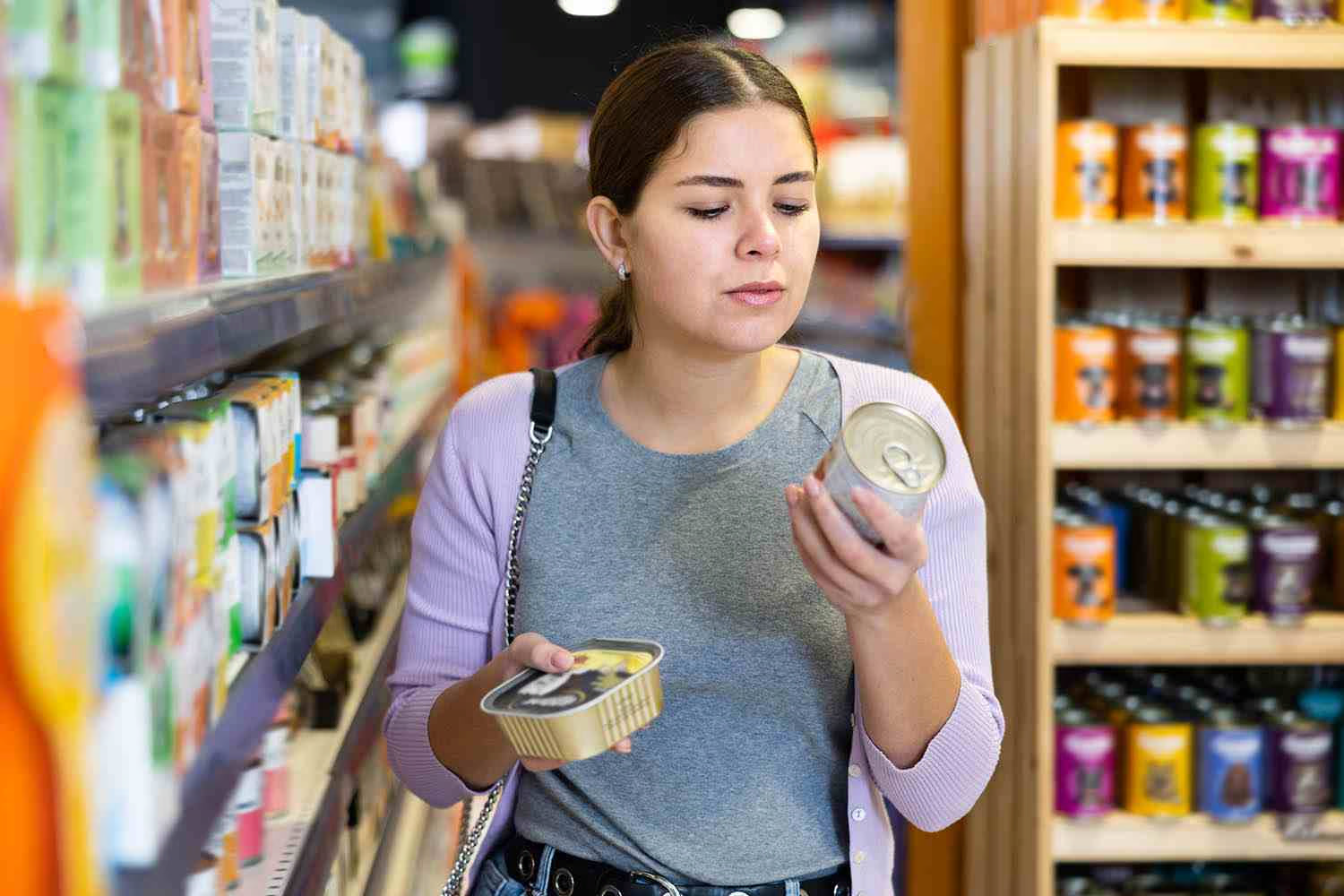 Market Information
Market Information
2+ MIN
27/06/2025
Pet Food Label Modernization
The Pet Food Label Modernization initiative creates new model regulations for pet food labels and packages, aligning them closely with labels found on human food. The modern design of pet food packaging will provide greater consistency and understanding to pet owners when they shop for food, treats, or supplements for their dog or cat. The Association of American Feed Control Officials' (AAFCO) published these model regulations in the 2024 Official Publication (OP).
What are the changes to be expected from the Pet Food Label Modernization initiative?
A prominently displayed 'intended use' statement is required on the front of the package where consumers can easily locate it. This statement will help pet owners quickly identify the species, life stage, and size and weight of pet for which the food is intended.
A pet nutrition facts box is included to resemble human food nutrition labels, with nutrient quantities listed using common household measurements, like a cup, weight in grams, or per can or pouch.
Total carbohydrates and dietary fiber replace the previous crude fiber measurement.
The Nutritional Adequacy Statement appears at the bottom of the Pet Nutrition Facts box, allowing consumers to know that the pet food is complete and balanced quickly.
If handling or storage instructions are used on the label, pet food makers can use common and familiar graphics to easily communicate this. It will take some time for all states to adopt these changes. AAFCO recommends a discretionary period of six years after publishing them in the 2024 OP. PFI and its members continue to work with AAFCO and state departments of agriculture to bring about these changes, educate pet owners, and encourage all states to adopt the model regulations.
These changes will help enable pet food labels to convey the best possible information about pet food products to regulators, veterinarians, and most importantly, pet owners.
Source: Pet Food Institute
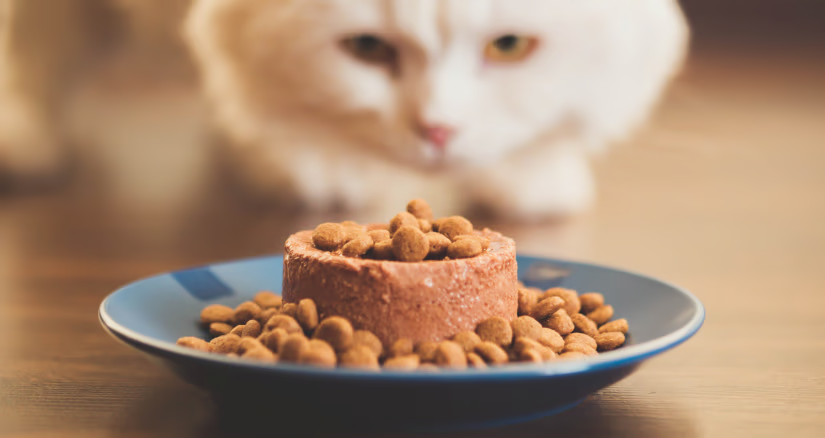 Nutrition
Nutrition
5+ MIN
26/06/2025
Experts Weigh In: Should Pet Owners Be Worried About Taurine?
Understandably, this kind of discovery may raise concerns among pet owners: if taurine supports cancer growth in mice and humans, should I be worried about the taurine in my pet's food?
The short answer: absolutely not. In fact, taurine is not only safe for your pet, but it's also an essential nutrient, particularly for cats and, in some cases, dogs.
An Essential Nutrient For Cats
Cats are obligate carnivores, meaning their bodies are uniquely adapted to derive essential nutrients from proteins. One of the most critical of these nutrients is taurine, a sulfur-containing amino acid that plays a role in several biological processes. While many mammals can synthesize taurine from other amino acids, such as methionine and cysteine, cats lack sufficient enzyme activity to do this efficiently. As a result, they must obtain taurine directly from their diet, primarily from meat, organ tissues, or synthetic amino acid supplementation.
Taurine supports multiple systems in the feline body:
Vision health: Taurine is required for the maintenance of photoreceptor cells in the retina. Deficiency can lead to feline central retinal degeneration (FCRD), a condition that causes progressive and often irreversible vision loss.
Cardiac function: Taurine plays a critical role in maintaining healthy heart muscle cells. Cats with low taurine levels are at high risk for dilated cardiomyopathy (DCM). In this life-threatening condition, the heart becomes enlarged and weakened, reducing its ability to pump blood effectively.
Reproduction and fetal development: Taurine is needed during pregnancy. Inadequate taurine intake in pregnant queens can lead to developmental abnormalities, low birth weight, or even fetal loss.
Immune system regulation and bile acid conjugation: Taurine is essential for the liver to form bile salts, which are required for the digestion and absorption of fats. Without sufficient taurine, cats may experience digestive issues and impaired absorption of fat-soluble vitamins, as well as a weakened immune response.
When a cat's diet is deficient in taurine, the effects often don't appear immediately, but over time, and the consequences are severe and potentially irreversible. For example, vision loss and heart disease caused by taurine deficiency may not be recoverable even after a dietary correction. That's why commercial cat foods are guided by the Association of American Feed Control Officials (AAFCO) to include taurine, ensuring cats receive adequate amounts to maintain health and prevent these devastating outcomes.
Conditionally Essential For Dogs
Unlike cats, dogs are not obligate carnivores and have the metabolic flexibility to synthesize taurine from other sulfur-containing amino acids, such as methionine and cysteine. For this reason, taurine is traditionally considered a non-essential amino acid in canine nutrition.
However, emerging research and veterinary case reports have shown that this assumption may not apply to all dog breeds. Some research suggests that certain breeds, such as Golden Retrievers, may have difficulty biosynthesizing taurine. Therefore, taurine supplementation may be beneficial for some dogs. As a result, many pet food manufacturers have added supplemental taurine to dog foods, even though AAFCO does not currently require it.
What the New Research Found (and What It Means for Pets)
The recent study in Nature found that in aggressive, therapy-resistant leukemia (in humans and mouse models), cancer cells exploited taurine to fuel their growth through a receptor called TAUT. Importantly, this was a very specific situation involving:
Malignant leukemia stem cells
A cancer-altered bone marrow environment
High expression of taurine transporters that help the cancer grow
Here's the critical distinction: this does not mean taurine causes cancer. Rather, cancer cells can hijack otherwise normal biological processes, including nutrient uptake, to survive.
There is no evidence that taurine supplementation in healthy pets increases the risk of cancer.
This study builds on what we already know about taurine and cancer. In some situations, taurine may help prevent cancer from developing. It has been shown to slow down tumor growth and help kill cancer cells in types like breast and colon cancer by reducing harmful stress in the body and calming inflammation. Animal studies have also found that taurine supplements can lower the chances of developing liver and bladder tumors caused by chemicals. On top of that, taurine helps keep cells healthy by protecting their energy centers (mitochondria) and keeping their outer layers (membranes) stable, which may be helpful in early disease or to protect healthy tissue.
Taurine has been used in pet food for decades, with a well-established safety record. Taurine has neuroprotective, cardiovascular, and antioxidant benefits in many contexts. The inclusion of taurine in cat diets is not only beneficial—it's considered by AAFCO to be a required nutrient in commercial foods to meet the nutritional adequacy standards they recommend. For dogs, taurine supplementation is generally considered safe and may offer added cardiovascular support, especially in susceptible breeds.
Science Is Powerful, Yet Context Matters
Scientific studies, especially those as groundbreaking as the recent research on taurine and leukemia, are essential for advancing our understanding of disease and enhancing both human and animal health, but science doesn't operate in sound bites. It requires context, careful interpretation, and a clear understanding of the specific conditions being studied. What's true in a lab model of aggressive human leukemia is not automatically true for healthy pets, and making that distinction is key.
At BSM Partners, our team of scientists, veterinarians, and nutritionists lives and breathes research—not just reading it, but critically analyzing it, translating it, and applying it in ways that help brands and pet parents make evidence-based decisions. We're passionate about separating facts from fear and making complex science easy to understand and act upon responsibly.
More research is needed to explore taurine's role in cancers, but it is important to understand that taurine is not a threat. It's a vital nutrient that plays an essential role in your pet's health, and we're here to ensure that important truths like this aren't lost in translation.
About the Author
Dr. Katy Miller works as the Director of Veterinary Services at BSM Partners. She earned her veterinary degree at Ross University and completed her clinical year at Louisiana State University. She previously served for 11 years as the Director of Dog and Cat Health and Nutrition for Mud Bay where she earned multiple certifications and specialized in pet food nutriton, prior to which she practiced general and emergency medicine for seven years. She is also a competitive three-day eventer, licensed falconer, and claims only two (Golden and Mini Doxie) of their nine dogs.
By Dr. Katy Miller
Source: BSM Partners
 Sustainability
Sustainability
4+ MIN
25/06/2025
Por Ludmila Barbi T. Bomcompagni
Sustainable Pet Nutrition: Reducing the Carbon Footprint in the Supply Chain
The Carbon Footprint in the Pet Food Industry
The carbon footprint of pet food is influenced by several factors, including the ingredients, production methods, packaging practices, and transport. Traditionally, animal proteins, such as beef, chicken, and fish, represent one of the biggest sources of greenhouse gas emissions (GHG) because of the heavy usage of resources (soil, water, and energy). Moreover, conventional agricultural practices and intensive livestock contribute to deforestation and gas emissions, e.g., methane and carbon dioxide.
In this way, considering the pet food production chain and adopting more sustainable practices is essential to reduce the impact, meet the growing consumers' demands, and achieve global decarbonization goals.
Selecting Ingredients and Additives: Alternative Proteins and Sustainable Sources
One of the primary practices to reduce the carbon footprint is to consider protein sources in pet food formulation. Alternative ingredients, such as insect proteins, vegetable proteins, or vegetable/algae proteins, offer important environmental benefits.
Insect proteins: Cricket or larvae meal has a carbon footprint up to 99% lower than conventional animal proteins. Producing insects requires less space, water, and food, so emissions are considerably lower.
Plant-based proteins: Ingredients such as soya beans, peas, and lentils have a lower environmental impact and can be present in balanced, sustainable pets' diets.
Algae: They are rich in nutrients and cultivated without cultivable lands. Algae such as spirulina capture CO₂ as they grow, helping to mitigate climate change.
Besides protein sources, the strategic use of natural additives is valuable to reducing emissions in the whole production chain. Zeolite clinoptilolite and Yucca schidigera extract demonstrated significant benefits in reducing the carbon footprint.
Zeolite clinoptilolite: It is a natural mineral with high adsorption capacity. Zeolite acts in the digestive tract, capturing nitrogenous compounds, such as amino acids. This reduces the emission of contaminant gases, enhances the domestic atmosphere quality by reducing aromas, and improves dietary efficiency since nutrient retention benefits digestibility.
Yucca schidigera: Renowned for reducing ammonia production, yucca directly contributes to the reduction of damaging gases coming from animal feces and urine, which positively contributes to the sustainability of farms and the pet food industry.
These additives enhance animal health and owners' comfort, as well as strengthen the commitment to brands with cleaner and more efficient production, aligned with global demands of sustainable practices.
Optimizing the Manufacturing Process: Energy and Waste
Sustainability in the pet food production process is more than selecting ingredients. Optimizing the manufacturing process is essential. It is crucial to invest in technologies that reduce energy consumption, adopt renewable sources, and minimize emissions in the extrusion, drying, and packaging stages. Using efficient production lines not only reduces operational costs but also positions brands as innovative and committed to preserving the environment.
Waste management is another important aspect. Recycling programs, reusing by-products to produce biofertilizers or biogas, and using biodegradable/recyclable packaging are strategies to reduce the environmental burden and add value to the final product.
Products with Low Carbon Footprint: Categories of Impact
Some food categories have a more significant impact on the environment than others. It depends on their format and their ingredients, for example:
Dry food: They have a lower carbon footprint than wet food since the production process is more efficient, and the transport has less impact because of its agility and dry food compactness.
Snacks: Their impact depends on the ingredients. The carbon footprint of plant-based or insect protein snacks is lower compared to those made of animal proteins.
Premium and Super Premium products: Many premium brands invest in sustainable practices, choosing fewer impacting ingredients and enhancing their process to reduce emissions.
The Path to Sustainability in Pet Nutrition
Sustainability in the pet food sector requires an integrated approach that involves the selection of sustainable ingredients, the smart use of natural additives, production processes optimization, and responsible management of waste. Ingredients such as alternative proteins, algae, and additives (zeolite and yucca) can be allies in carbon footprint reduction, promoting more efficient and responsible animal nutrition.
In addition, pet food manufacturing can significantly benefit from energy efficiency, renewable sources, and a circular economy. Brands investing in these practices not only reduce their carbon footprint but also build a legacy of respect for the environment, appealing to more aware consumers.
Sustainability is not a temporary trend but a need for the future of the pet food industry. Companies adopting sustainable practices position themselves for commercial success and the preservation of the planet.
By Ludmila Barbi Trindade Bomcompagni
Source: All Pet Food Magazine
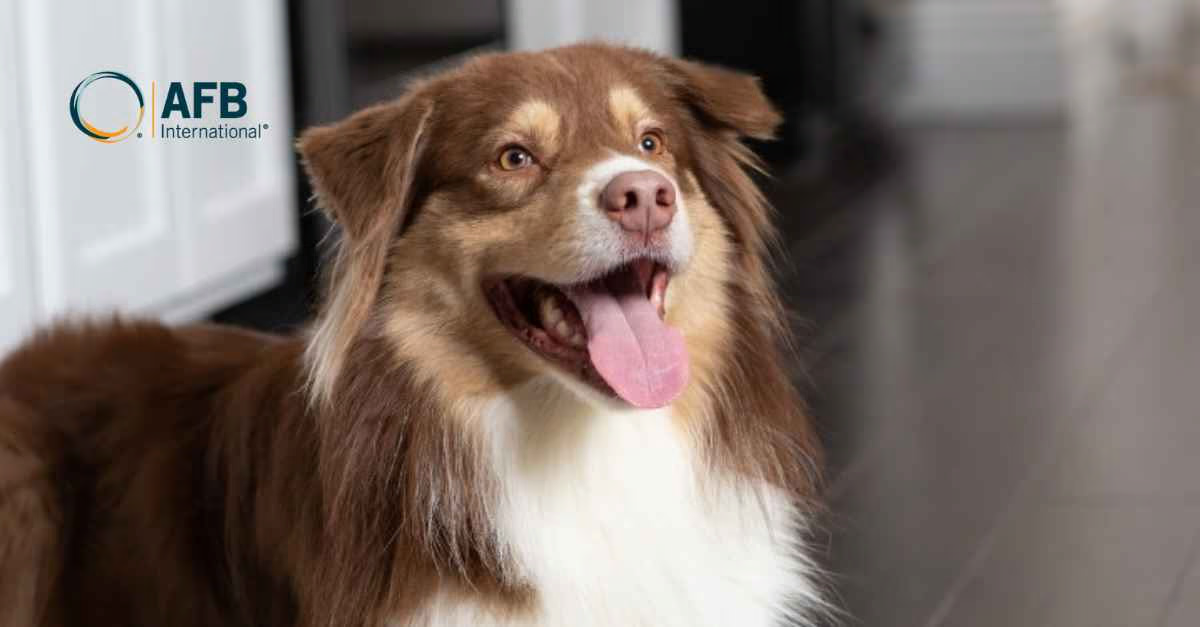 Palatants
Palatants
3+ MIN
25/06/2025
Delayed Dry Palatant Coating: Does it Affect Palatant Recovery Rate and Palatability?
In dry pet food manufacturing, the standard palatant application sequence typically follows three steps: (i) fat spraying, (ii) liquid palatant spraying, (iii) dry palatant application. Most fats must be heated (30-40 °C) to remain liquid. Once the fat is applied, palatants are usually layered on top, as depicted in Figure 1.
However, in certain situations –such as when the dry palatant is applied at a different location– it may be necessary to coat pre-fat-coated kibbles with dry palatants at a later stage.
This study investigates two key questions:
Does applying dry palatant on room-temperature fat-precoated kibbles reduce palatant adhesion efficiency?
Does this delayed application affect palatability?
EXPERIMENTAL DESIGN
Three coating conditions were tested:
Direct dry palatant application: 3 % of fat was sprayed onto 3 % fat-precoated kibbles. The 3 % fatprecoated kibbles were produced in a standard way, with the fat being sprayed on warm dried kibbles exiting the dryer.There was a three-week interval between the two fat applications, and the latter was followed by an immediate dry palatant application.
Delayed dry palatant application #1 (3 weeks delay): 6 % of fat was sprayed onto uncoated kibbles. After three weeks of storage, the dry palatant was applied.
Delayed dry palatant application #2 (3 months delay): Same as Condition 2, but with a three-month storage period before applying the dry palatant.
Each condition was tested on both cat and dog kibbles, using dry palatant application levels of 1.5 % and 2.0 %.
The same poultry fat (applied at 35 °C) was used across all conditions.
Measurements
Recovery Rate (RR): using analytical tracers, the actual percentage of dry palatant recovered on the kibbles was calculated.
Palatability testing: carried out in AFB dog and cat kennels with 30 animals over two days; versus tests were analyzed using paired t-tests for dependent samples.
Moisture content: controlled to ensure it did not influence palatability results (cat: 5.8 % ± 0.1, dog: 7.0 % ± 0.1).
Crude fat content: verified for coating uniformity (cat: 11.9 % ± 0.3, dog: 10.4 % ± 0.3).
RESULTS
Recovery Rate of dry palatant
Figure 2 illustrates the RR of the dry palatant for each condition.
Key finding: the RR remained consistent across all conditions, indicating that at this fat level (6 %) dry palatant
Palatability results
Table 1 summarizes the results of the versus tests.
Key observations:
the tests showed no statistically significant difference in palatability.
one case showed a significant preference: cat kibbles with 1.5 % dry palatant, applied after 3 weeks.
CONCLUSION
Delaying dry palatant application does not reduce adhesion efficiency.
Palatability remains unchanged, except in one specific case.
These findings indicate that dry palatant application can be delayed by days, weeks, or even months after fat coating without compromising product performance or dry palatant adhesion.
This flexibility could be particularly useful when:
applying dry palatants in a separate coating line (e.g., liquids in a batch coater, powders in a continuous coater).
manufacturing two diets that differ only in the coating step.
conducting trials in AFB facilities using customer-specific fat and application conditions.
Cautionary note: These results are based on a limited set of conditions (one type of fat, one type of kibbles, one dosage of fat…) and should not be taken as universally representative. They are intended to provide insights rather than conclusive evidence.
To learn more about this topic, or to speak with our Science & Technology experts, please reach out to your AFB Sales representative or afbinternational.com/contact.
Source: AFB International
 Sustainability
Sustainability
4+ MIN
24/06/2025
Por María Candelaria Carbajo
Life Cycle Analysis, a Possibility Towards Sustainability
For several years now, concern for sustainability has driven various industries to evaluate how to reduce the environmental impact of their processes and operations. In this context, Life Cycle Assessment (LCA) becomes a key tool for analyzing and improving the sustainability of final products' whole production chain.
Pet Food Value Chain: A Key Factor
The pet food production value chain and its importance are key to the conversation about the sustainability of the industry's production system. It represents between 1.1% and 2.9% of global agricultural GHG emissions. The situation gets worse with certain products, such as those considered premium or top-quality, due to their higher meat content, which implies a greater need for GHG emissions and the exploitation of agricultural land to obtain them. If companies commit to quantifying the environmental impact of their different product chains, it is possible to start a data-driven conversation toward a more sustainable future.
Science-Based Targets
Following the goal of reducing emissions and the environmental impact of a company's products or even the industry's value chain, it is necessary to recognize SBTi (Science-Based Target Initiatives). This initiative motivates and incentivizes companies to quantify their emissions footprint and set targets, aiming to achieve or sustain 1.5°C (or at least below 2°C) emissions. In our industry, the majority of emissions come from the supply chain, known as Category 1 of Scope 3 (purchased goods and services) in the GHG Protocol, which relates to raw materials purchased to create food products. Measuring the carbon footprint at the product level facilitates a more data-informed discussion about reduction strategies throughout the supply chain, in addition to expanding opportunities to support initiatives to reduce emissions throughout the value chain.
Life Cycle Analysis, Applied to the Pet Food Industry: A Tool for Building a Future
The scientific community is increasingly focused on sustainability. The increasing demand for pet food is also consequently increasing the resources used. To address the impact of production, it is necessary to have accurate data and validated information that allows for informed and objective decision-making.
Life Cycle Assessment is a standardized methodology used for the evaluation of a product's environmental impact, process, or service throughout its entire life cycle, from the extraction of raw materials to final disposal, considering aspects such as energy consumption, GHG emissions, water use, and waste generation, among others. It consists of four main phases:
Goal and scope definition: The study's boundaries and the impacts to be assessed are defined.
Inventory: Data is collected on resource use and emissions associated with each life cycle stage.
Impact assessment: The inventory data is translated into specific environmental impacts.
Result interpretation: The information obtained is analyzed to identify opportunities for improvement and impact reduction.
A life cycle assessment of Brazilian dog food identified the formulation stage as the most influential in a product's sustainability, accounting for between 70% and 90% of the total environmental impacts. Some of these ecological consequences included terrestrial and marine eutrophication, excessive nutrient accumulation, ocean acidification, particulate pollution, and climate change.
LCA Applied to the Pet Food Industry
LCA is a system that allows companies to identify critical points in a production process and make data-driven decisions with the aim of reducing environmental impact. Some key areas where this methodology can be applied are:
Raw materials and formulation: The ingredients used to produce pet food represent one of the main sources of environmental impact, such as meat or fish, for example, which are obtained through a process that needs many natural resources. With the Life Cycle Assessment process, a company can evaluate the impact of using more sustainable options, such as alternative proteins from insects, algae, or meat by-products.
Production and processing: Production plants consume energy and water, in addition to generating emissions and waste. A detailed analysis helps identify ways to optimize energy consumption, reduce unnecessary water use, and improve overall efficiency. It also provides clarity on the benefits of incorporating renewable energy or cleaner technologies.
Packaging and distribution: Product packaging and logistics also have a significant environmental impact. LCA can be used to analyze the most sustainable packaging choices, such as biodegradable, recyclable, or reusable packages. In the case of distribution, alternatives can be evaluated to optimize delivery routes and reduce pollution.
Usage and disposal: Pet food impact does not end with consumption but with packaging disposal and contammination. Having an LCA allows us to design recycling strategies, reduce waste generation, and promote environmental education among consumers.
Conclusion
Implementing the Life Cycle Assessment process in the pet food industry allows us to visualize countless benefits, from reducing the carbon footprint, optimizing the use of non-renewable resources, and, crucially, making better decisions. Its benefits and opportunities position LCA as a highly useful tool for the pet food industry on its journey toward sustainability.
By All Pet Food
Source: All Pet Food Magazine
 Automation
Automation
4+ MIN
23/06/2025
Digital Transformation Journey: Guiding a Pet Food Manufacturer to Industry 4.0
Our Approach To start the audit, NorthWind's Team met with plant production leads and process experts from each area of the plant, including forecasting, planning, production, maintenance, information and technology, research and development, purchasing, distribution, and accounting, with the primary goal of gathering information about current operations and flow of data throughout the organization. These meetings helped the NorthWind team understand the existing infrastructure and identify focus points. Information Gathering Focus Points Evaluation of current technological infrastructure Diagnosis of the level of automation and current digital methodologies Identification in areas of opportunities for improvement Manufacture's capabilities to integrate industry 4.0 technologies Review of current metrics on operational efficiencies and quality Evaluation of current metrics on safety and sustainability Review of current key performance indicators (KPIs) After gathering the information NorthWind developed, in collaboration with plant personnel, an on-site agenda planned around production schedule and personnel availability. While on-site NorthWind identified and analyzed the existing gaps, deficits, and areas of opportunities with respect to the adoption of Industry 4.0 standards. At the conclusion of the site visit, NorthWind developed a comprehensive report outlining the plant's digital transformation journey. The report included the current status of the manufacturing practices, diagnosis of areas of opportunity, and proposed an actionable plan with progressive milestones to fully achieve Industry 4.0 manufacturing standards. Digital transformation recommendations Below is a sample of the recommendations the NorthWind Team provided or discussed with the manufacturer based in the findings in the audit. Discussed the importance of a Raw Material Silo Inventory System. Reviewed Manual Documents that would benefit from a digital format. Recommended a replacement and modernization of the existing control system. Reviewed alternatives to implement seamless upstream and downstream equipment. Reviewed data collection and material tracking benefits for ingredients throughout the plant. Reviewed automation alternatives for Setpoint management for dosing raw material. Established Rework Integration Protocol on Production Line. Reviewed the benefits of automation for the Extrusion Process. Reviewed the benefits of automation for unloading finished product silos and provide material tracking. Proposed a data collection system in the packaging area by communicating with robotic arms, bagging machines, and using a barcode tracking system. Reviewed implementation of a Warehouse Management System (WMS). Increase cybersecurity of the plant control system. The recommendations can be completed in phases, and the desired Industry 4.0 goals can be achieved with modernization of the process control system, MES Dashboards (Manufacturing Execution System), Digital Solutions (network architecture and topology), Integration with their ERP System, Cloud connectivity, and redundancy. The impact Based on the report's findings, the customer can expect the following Customer Benefits after implementing Industry 4.0 practices: Increased Efficiency: Automation and connectivity lead to streamlined processes, reducing downtime and enhancing productivity. Improved Quality: Advanced technologies such as machine learning and AI can monitor production quality in real-time, allowing for quicker adjustments and reducing defects. Greater Flexibility: Smart manufacturing systems can quickly adapt to changing market demands, enabling mass customization and shorter lead times. Enhanced Data Analytics: Industry 4.0 collects vast amounts of data, allowing manufacturers to gain insights into operations, customer preferences, and market trends for better decision-making. Cost Reduction: Optimized processes and predictive maintenance can lower operational costs through efficient resource utilization and reduced waste. Supply Chain Optimization: Real-time data sharing enhances collaboration across the supply chain, improving inventory management and reducing bottlenecks. Sustainability: More efficient energy use and reduced waste contribute to more sustainable manufacturing practices, aligning with environmental goals. Workforce Empowerment: Digital tools can enhance worker capabilities and safety by providing real-time information and training resources, fostering a more skilled workforce. Remote Monitoring and Management: IoT technologies facilitate remote oversight of manufacturing processes, enabling quicker responses to issues and greater operational control. Innovation benefits: The integration of advanced technologies encourages continuous innovation, allowing manufacturers to develop new products and services quickly. The pet food manufacturer gained a clear, actionable roadmap for their digital transformation journey toward Industry 4.0. The comprehensive site audit provided valuable insights into their existing infrastructure, allowing them to identify key areas for improvement. With NorthWind's guidance, they now have a strategic plan to enhance efficiency, performance, and future scalability. As they implement these recommendations, they are well-positioned to optimize operations and stay ahead in an increasingly digital and automated industry. Learn more about NorthWind's Solutions the Pet Food Industry or reach out to schedule a walk through of a system. By Aldo Martínez Source: NorthWind Technical Services
 Manufacturers
Manufacturers
5+ MIN
19/06/2025
Mars raises the bar for seafood traceability in petfood
Mars, Incorporated —the maker of Pedigree, M&M's, Ben's Original, and leading veterinary service provider— announced today that it has joined the Global Dialogue on Seafood Traceability (GDST) and has partnered with Wholechain, a GDST Verified Capable solution provider, to establish robust, end-to-end traceability across its seafood supply chains.
By joining the GDST, Mars underscores its dedication to transparency and traceability, further aligning with global standards demonstrating to customers that seafood products are fully traceable, but also enhances Mars' business and supply chain decision-making, supporting the implementation of CSR policies, risk mitigation and business resilience.
Mars has become the first petfood company in the world to commit to meeting the GDST Standard and implement digital interoperable traceability —the capturing of standardized data and exchanging of that data between systems— through their seafood supply chains.
'At Mars, we have been working for more than 15 years, in collaboration with WWF, to drive more responsible fish sourcing, and address the growing pressures on vulnerable ocean ecosystems,' said Andrew Russell, Global Marine Sustainability Lead of Mars Petcare.
'By joining the GDST, we are advancing our commitment to responsible sourcing and are proud to work with Wholechain to make meaningful strides in achieving end-to-end traceability across our seafood supply chains.'
In signing up to the GDST Standard Mars joins a growing global coalition of companies dedicated to product traceability. With investors increasingly seeing the benefits of standardized digital interoperable traceability, the GDST Standard is emerging as the leading partner for companies seeking to enhance sustainability and traceability in seafood supply chains worldwide. GDST serves as a vital platform, working to develop standards that allow for interoperability across supply chains.
To meet the GDST Standard, Mars has partnered with Wholechain, a GDST Verified Capable solution provider.
Wholechain, a proven leader in traceability, offers Mars a scalable solution that works not only in seafood, but across multiple commodities. Wholechain is currently supporting Mars in establishing visibility into key points within its seafood supply chain, from origin to finished product. By leveraging Wholechain's platform, Mars can enhance product integrity, mitigate risk, and help ensure responsible environmental and social sourcing across its operations.
'Mars' commitment to adopting GDST standards and prioritizing traceability is a powerful example of industry leadership,' said Jayson Berryhill, CEO of Wholechain. 'We are excited to work with Mars to turn their commitment into action, providing the technological support needed to deliver full visibility across their seafood supply chain.'
Mars' partnership with GDST and Wholechain also supports the longer-term expansion of the GDST Standard into non-seafood commodity markets. Huw Thomas, Director of GDST explains:
'Companies with supply chains including non-seafood commodities —such as palm, soy, beef, chicken— are already exploring utilization of the GDST Standard in realizing their digital interoperable traceability ambitions. The learnings Mars will be taking from implementing the GDST Standard for their seafood products across their non-seafood supply chains is anticipated to help to drive wider adoption of the GDST Standard across multiple markets, delivering industry-wide improvements in traceability and accountability.'
About Mars, Incorporated
Mars, Incorporated is driven by the belief that the world we want tomorrow starts with how we do business today. As a $50bn+ family-owned business, our diverse and expanding portfolio of leading pet care products and veterinary services support pets all around the world and our quality snacking and food products delight millions of people every day. We produce some of the world's best-loved brands including ROYAL CANIN®, PEDIGREE®, WHISKAS®, CESAR®, DOVE®, EXTRA®, M&M's®, SNICKERS® and BEN'S ORIGINAL™. Our international networks of pet hospitals, including BANFIELD™, BLUEPEARL™, VCA™ and ANICURA™ span preventive, general, specialty, and emergency veterinary care, and our global veterinary diagnostics business ANTECH® offers breakthrough capabilities in pet diagnostics. The Mars Five Principles—Quality, Responsibility, Mutuality, Efficiency and Freedom—inspire our 150,000 Associates to act every day to help create a better world for people, pets and the planet.
For more information about Mars, please visit www.mars.com. Join us on Facebook, Instagram, LinkedIn and YouTube.
Media Contact
[email protected]
About the Global Dialogue on Seafood Traceability
The Global Dialogue on Seafood Traceability (GDST) is an international, business-to-business platform dedicated to creating global standards and guidelines for interoperable seafood traceability. Founded in 2017 by WWF and IFT, GDST became a partnership Foundation in 2022, guided by a Steering Committee comprising industry leaders that operates under the oversight of the Secretariat, which facilitates collaboration and implementation of its objectives.
GDST's primary goal is to establish a common framework for seafood traceability that enables seamless data exchange across the supply chain. Its standards, including the Critical Tracking Events (CTEs) and Key Data Elements (KDEs), ensure that traceability systems are interoperable, addressing industry-wide challenges like combating illegal, unreported, and unregulated (IUU) fishing and improving sustainability practices.
The GDST has 95 Partners, including major seafood processors, retailers, software companies, NGOs and global brands. Notable partners include MSC, Wholefoods, Metro, Thai Union, and WWF. GDST also works closely with international organizations like the FAO to align its standards with global fisheries management and policy frameworks.
Contact
Huw Thomas
[email protected]
For more information: www.thegdst.org
About Wholechain
Wholechain is a blockchain-based traceability solution built to enable trust, coordination, and transparency in fragmented supply chains. Wholechain works across commodities, allowing businesses to manage risks and increase efficiencies while enabling consumers to make more responsible decisions. Wholechain is part of numerous industry initiatives for interoperability including GS1's Seafood Industry Blockchain Interoperability POC, and is a former winner of the Fish 2.0 competition at Stanford for Supply Chain Innovation, and a winner of the FDA's New Era of Smarter Food Safety Food Traceability Challenge.
Contact
Mark Kaplan
[email protected]
For more information: www.wholechain.com
Source: Mars
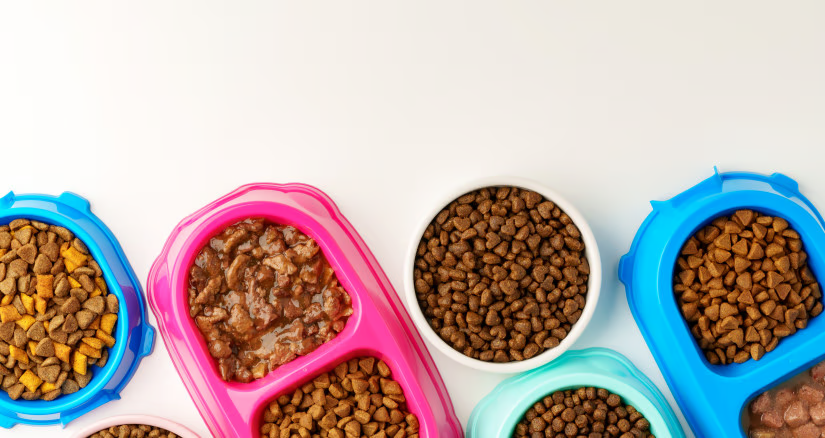 Nutrition
Nutrition
6+ MIN
16/06/2025
Preserving Quality: Understanding Shelf Life in Pet Food
Regardless of whether it's crunchy kibble, savory canned food, nutritious treats, or raw diets, the longevity of a product—its ability to remain safe, nutritious, and appealing over time—is critical.
Shelf life isn't merely a technical consideration; it's a commitment to pet safety, product integrity, and brand trust. This article delves into the scientific and operational elements that govern shelf life, including packaging, water activity, moisture control, pH, oxygen control, and testing, while also exploring current industry practices and future opportunities.
What Is Shelf Life?
At its core, shelf life is defined as the time span during which a food product maintains its safety, sensory qualities, nutritional value, and meets any label claims. For pet foods, this is particularly important, as spoilage can pose serious health threats due to microbial contamination or nutrient degradation. Beyond the obvious health implications, spoiled pet food also results in economic loss, brand damage, and potential regulatory consequences. Contaminants such as Salmonella or mycotoxins are not just theoretical risks—they represent real dangers that underline the importance of shelf life management.
Packaging, Water Activity, Oxygen—Oh My!
One of the first, and perhaps most visible, lines of defense in preserving shelf life is packaging. It serves as a barrier against the many environmental factors that accelerate spoilage, such as moisture, oxygen, light, and microbial intrusion.
Advances in technology have brought about modern solutions like multi-layer barrier films, which significantly reduce oxygen and water vapor transmission rates. These materials help slow down oxidative damage and microbial growth, thereby prolonging product stability. Modified Atmosphere Packaging (MAP), where inert gases like nitrogen replace oxygen within sealed packages, is another widely adopted method. Some products even use vacuum packaging or oxygen scavengers, which actively remove or bind residual oxygen. These innovations are not just cosmetic upgrades—they are essential, stemming from research-backed strategies that show oxygen-permeable packaging drastically reduces shelf life, particularly for higher-fat foods.
Another critical yet often misunderstood aspect of shelf life is the distinction between moisture content and water activity. Though they sound similar, they are fundamentally different. Moisture content refers to the total amount of water in a product, both bound and free, while water activity (aw) measures only the free, unbound water that supports microbial growth and enzymatic activity.
Water activity is a more accurate predictor of spoilage potential. Most bacteria are unable to grow below a water activity of 0.91, and molds and yeasts are generally inhibited below 0.70. Virtually all microbial growth ceases below 0.60. For this reason, dry kibble typically maintains a water activity below this threshold. However, semi-moist treats or moist products often require humectants, like glycerol, to reduce water activity while maintaining the desired texture and mouthfeel through the shelf life of the product.
pH is another pivotal factor in maintaining shelf stability, particularly for moist and canned foods. A lower pH environment—one that's more acidic—can inhibit the growth of many spoilage organisms and pathogens. While the FDA considers foods with a pH below 4.6 and a water activity below 0.85 to be shelf stable, some studies suggest that a lower water activity threshold should be used to account for variations in water activity within products. To achieve this balance, pet food manufacturers often turn to natural organic acids such as citric acid, lactic acid, or ascorbic acid. While these compounds are effective in lowering pH and extending shelf life, over-acidification can negatively impact flavor and nutrient stability, so precision in formulation is key.
Oxygen, though invisible, plays a significant role in the degradation of pet food. It promotes lipid oxidation, which leads to rancidity and off-odors, as well as the breakdown of essential vitamins like A, D, E, and K. Moreover, when combined with high moisture content, oxygen can accelerate microbial spoilage.
The industry has responded with a range of oxygen control strategies, including the use of natural antioxidants like mixed tocopherols and rosemary extract. While synthetic antioxidants like BHA, BHT, and ethoxyquin have been used historically, some are now falling out of favor due to safety concerns and shifting consumer preferences. Additionally, nitrogen or CO2 flushing, vacuum sealing, and the use of oxygen-absorbing sachets are commonly employed during packaging to reduce residual oxygen and enhance oxidative stability.
Testing Protocols
Testing is the cornerstone of ensuring that shelf life predictions hold up under real-world conditions. Manufacturers rely on several methods to validate and monitor product safety over time.
Accelerated Shelf Life Testing (ASLT) exposes products to elevated temperatures and humidity to simulate long-term aging in a shorter period. Microbiological assays help detect harmful organisms like Salmonella, Listeria, mold, and yeasts. Chemical assays monitor parameters like peroxide values and free fatty acid content, which serve as indicators of lipid oxidation. Organoleptic tests —sensory evaluations of appearance, odor, and palatability— are also crucial, especially for products designed to appeal to both pets and their human buyers. More advanced companies are beginning to adopt real-time shelf life studies to fine-tune predictions based on actual storage conditions, making shelf life a dynamic and data-driven process.
In recent years, the pet food industry has taken significant steps forward in response to increased scrutiny and a more informed consumer base. Following several high-profile recalls in the early 2000s and 2010s, many manufacturers have implemented rigorous safety protocols. These include Hazard Analysis and Critical Control Points (HACCP) plans, Good Manufacturing Practices (GMPs), and enhanced traceability systems that incorporate barcoding and blockchain technologies. Additionally, as demand grows for more natural and 'clean label' products, manufacturers are shifting toward natural preservatives and reducing reliance on synthetic additives. Regulatory oversight from agencies like the FDA, AAFCO, and USDA ensures that minimum standards are met, while third-party certifications such as SQF and BRC signify voluntary excellence in quality assurance.
Ultimately, maximizing shelf life in pet food is a complex interplay of science, technology, and responsibility. From managing water activity and pH to controlling oxygen exposure and conducting thorough testing, every link in the production chain contributes to the overall quality and safety of the final product. As consumer expectations continue to evolve and innovations in ingredients and processing expand, shelf life strategies must keep pace —not merely to prevent spoilage, but to safeguard the health, wellness, and trust of the pets and people who depend on them.
Partnering for Better Shelf Life Outcomes
Navigating the complexities of pet food shelf life requires more than just theoretical knowledge —it demands real-world experience, multidisciplinary expertise, and forward-thinking solutions. That's where BSM Partners comes in. As the largest full-service consulting firm serving the pet industry, BSM Partners helps companies implement science-backed strategies to improve product stability, safety, and quality. From designing effective packaging solutions to optimizing formulations for ideal water activity and pH, our team of veterinarians, food scientists, microbiologists, and regulatory experts supports every step of the product lifecycle.
With BSM Partners, pet food brands can confidently address shelf life challenges, align with regulatory standards, and deliver safe, high-quality nutrition that meets the expectations of today's discerning pet owners.
About the Author
Dr. Emily Taylor is Manager of BSM Assurance, BSM Partners' Food Safety, Quality Assurance, and Regulatory Services team. Dr. Taylor is a nutritionist with over 14 years in the animal industry. She resides in Lafayette, Indiana, with her family, showing dressage horses.
By Dr. Emily Taylor, MS, PhD, PAS, PCQI
Source: BSM Partners
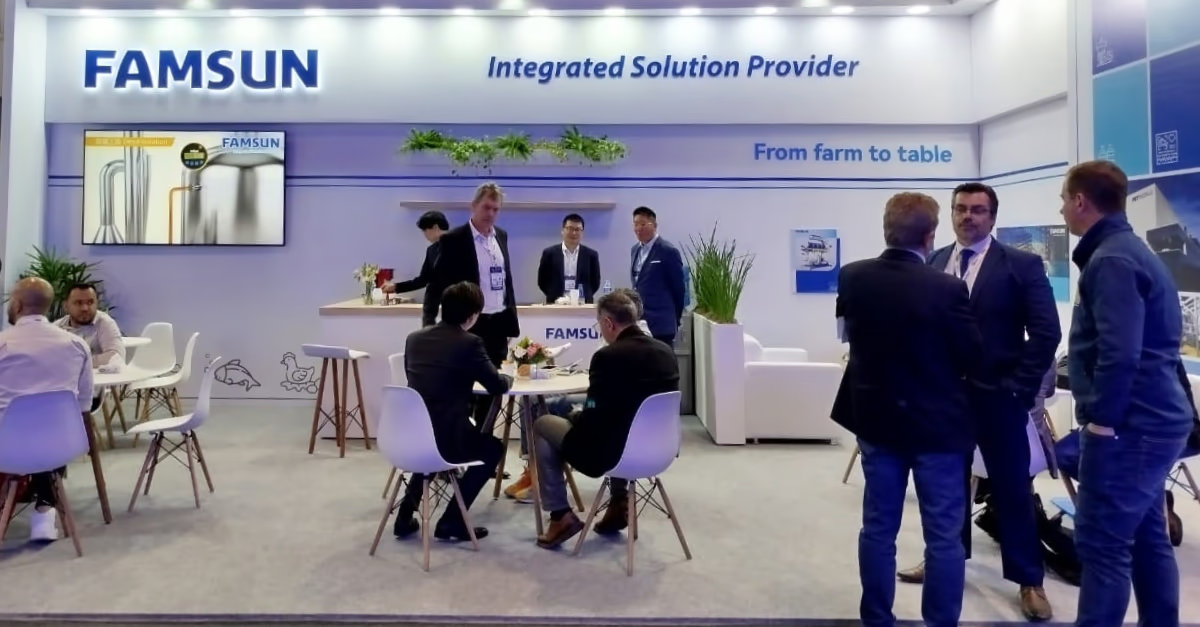 Automation
Automation
2+ MIN
13/06/2025
FAMSUN strengthens its leadership in Latin America with integrated solutions and innovation in pet food
Strategic presence and regional growth FAMSUN operates in several key pet food markets in Latin America, including Mexico, Brazil, Colombia, Ecuador, Peru, and Chile, with local offices in Guadalajara, São Paulo, Bogotá, Guayaquil, Lima, and Santiago. The company's presence in the region spans multiple segments of the agrifood industry: feed engineering, oil processing, pet food production, silos, breeding technologies, and steel structures. In the pet food sector alone, over 200 manufacturers in Latin America rely on FAMSUN equipment annually, producing more than 4 million tons of high-quality pet food. The company provides fully integrated solutions, including plant design, engineering, equipment, automation systems, and smart factory management. Meeting industry challenges: efficiency and sustainability FAMSUN identifies cost efficiency and environmental responsibility as top concerns among pet food manufacturers in the region. To address these challenges, the company offers energy-saving, performance-driven technologies, such as the ECO dryer, ECO hammermill, and twin-screw puffing machine, all designed to support more sustainable and efficient operations. Additionally, the company's proprietary FAMOM (FAMSUN Manufacturing Operation Management) platform enables manufacturers to enhance productivity through real-time data management, predictive maintenance, and operational optimization. Success stories and global partnerships A standout example of FAMSUN's global impact is its strategic partnership with GAMBOL Group, a leading pet food brand in China. Over the past decade, FAMSUN has delivered more than 10 automated production lines across GAMBOL's facilities in China and Thailand. These plants feature intelligent warehousing, logistics automation, and full traceability, setting a benchmark for quality, safety, and innovation in the pet food industry. Looking ahead: investments and innovation for Latin America As part of its medium-term strategy, FAMSUN will establish a new production base in Brazil in 2025, aiming to bring advanced manufacturing expertise and smart factory technologies closer to pet food producers across Latin America. The goal is to support regional growth with future-ready, efficient, and scalable solutions. FAMSUN's current priorities for the region include the development of high-performance equipment, custom factory designs, and integrated automation systems tailored to the evolving demands of the Latin American market. Upcoming industry events FAMSUN will be actively participating in major events across Latin America, including: VICTAM Latam Brasil Avicultor Mais EXPOPORCINA Peru CIPAL APA Peru These events offer valuable opportunities for FAMSUN to showcase new technologies, connect with partners, and strengthen its presence in the region. For more information about FAMSUN's integrated solutions and global projects, visit: www.famsungroup.com Source: All Pet Food
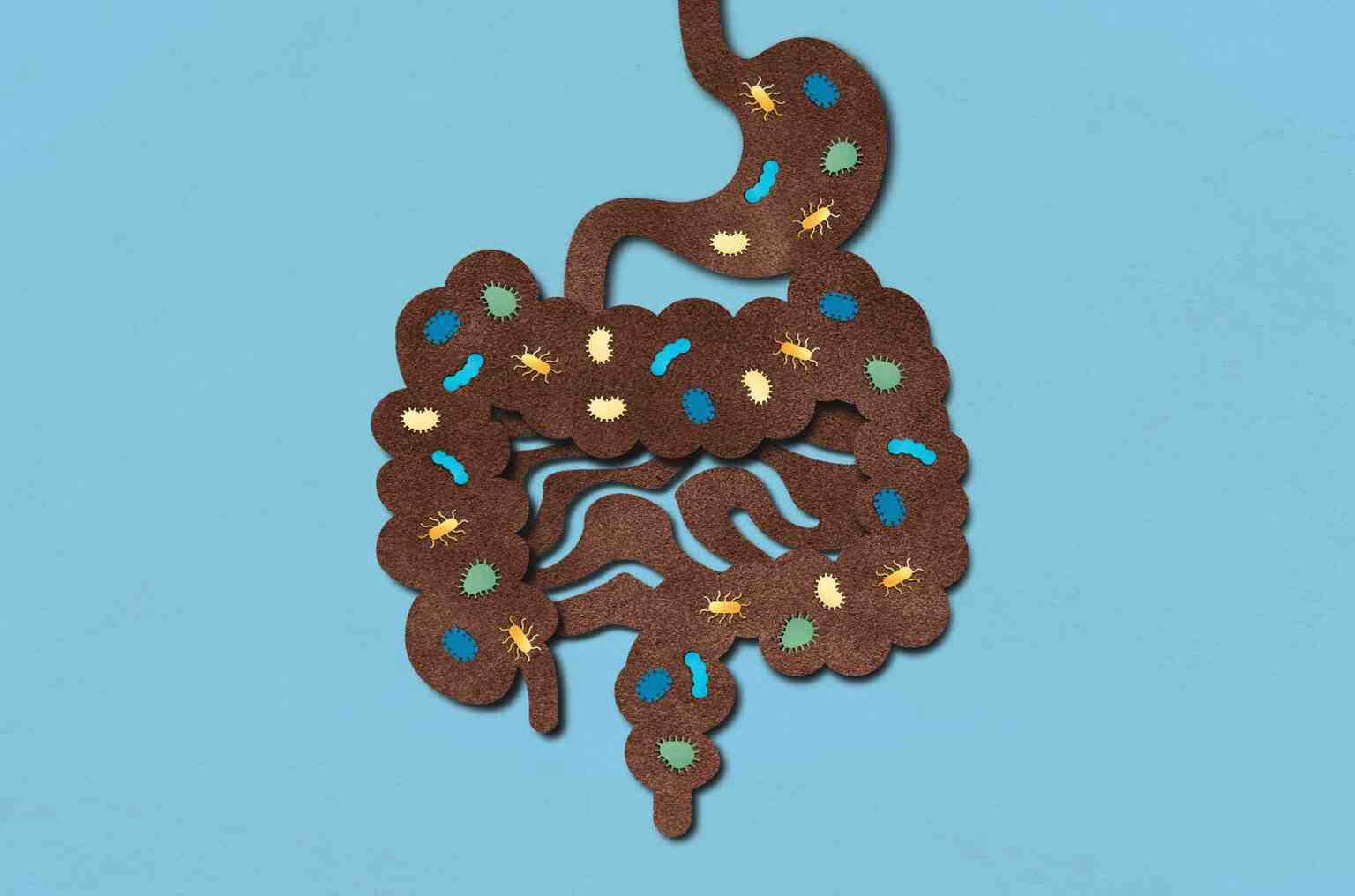 Market Information
Market Information
4+ MIN
12/06/2025
Hill’s Pet Nutrition and Harvard T.H. Chan School of Public Health Researcher Deepen Collaboration
Ahead of Pet Appreciation Week (June 1-7), Hill's Pet Nutrition, a global leader in science-led nutrition, and Harvard T.H. Chan School of Public Health researcher Dr. Curtis Huttenhower are proud to announce a strengthened collaboration and launch of a comprehensive new web portal for the One Health Microbiome Resource (OHMR).
The web portal serves as a central resource across academia and industry, fostering dialogue and providing valuable resources, including standardized protocols and computational tools, to study the role of the microbiome in maintaining pet health and understanding disease. It also provides the first centralized repository for studies of the pet gut microbiome, featuring over 2,000 samples spanning diverse demographics and clinical diagnoses. This combination of information, data, and resources will help to fuel groundbreaking research in this critical area. The free exchange of knowledge within the scientific community fosters collaboration and advances microbiome science by paving the way for new nutritional strategies and therapeutic interventions.
'The launch of the OHMR portal is a testament to the power of collaboration, allowing us to accelerate the pace of scientific research and to translate its findings more rapidly into benefits for both pets and their owners,' said Dr. Huttenhower, Professor of Computational Biology and Bioinformatics at Harvard Chan School. 'We all love our pets, and understanding their microbiomes can provide insight into not only their health, but our own as well. Our pets' diets and environments represent a microcosm of human nutrition, and as a result, pets' microbiomes are a particularly powerful tool for diagnostics, preventative care, and ensuring treatment effectiveness through interactions with food and medicine.'
Building on the team's pioneering work to create the largest and most comprehensive profiles of human and pet microbiomes publicly available, Dr. Huttenhower and Hill's continue to leverage their combined expertise to unlock new insights into the interconnected health of pets, their owners, and the environment by integrating these data with information for pet parents, scientists, and veterinarians on how to interpret and get involved with this exciting area of research.
'For over a decade, Hill's has been deeply invested in pet microbiome research, and the OHMR represents a significant step forward in our commitment to improving pet health,' said Dave Baloga, Executive Vice President of Science & Technology at Hill's Pet Nutrition. 'This dynamic hub provides the scientific community with unprecedented access to data, propelling groundbreaking research and driving innovation in pet nutrition. We're already seeing the OHMR's impact, and we're incredibly excited about its potential to transform the lives of pets for years to come.'
Using OHMR data, Hill's Pet Nutrition has already funded several groundbreaking studies revealing new insights into the pet gut microbiome. One published recently in the International Society of Microbial Ecology (ISME) Journal details the OHMR's collection of companion animal gut metagenomes, deepening our understanding of the microscopic world within our pets. This research has significant implications for understanding diseases, supporting the immune system, and even influencing specific microbial chemical activities. An additional study in the journal mSystems, using information from the OHMR, provides the first understanding of how different dietary fiber sources can improve canine health, consistent with findings from human health studies and opening the potential for new product development.
With a 75-year legacy of science-led nutrition, Hill's Pet Nutrition is pioneering advancements in pet microbiome research. Recognizing the profound impact of the gut microbiome on pet health and disease, Hill's leverages its world-class Global Pet Nutrition Center and leading-edge technology to explore how nutrition can optimize the microbiome for improved digestion and overall well-being. Scientific research has shown that elements of the gut microbiome can influence both the process and the results of pets' digestion, and Hill's is at the forefront of developing nutritional strategies to support these beneficial microbial communities.
'It's all connected – our pets' health, our health, and the world around us,' said Baloga. 'The gut and skin microbiomes of pets and humans are surprisingly overlapping, and these tiny organisms play a huge role in everything from digestion and immunity to behavior and energy levels. When these microbiomes are disturbed and lose their normal ecological balance, it can lead to all sorts of problems. That's why Hill's is so committed to understanding how diet, disease, and the environment affect the pet microbiome. This new research will give us the knowledge we need to help our pets live healthier, happier lives, and we're excited to share these discoveries with pet owners everywhere.
To learn more about this important work and its potential to improve the lives of pets and their families, visit onehealthmicrobiome.org.
About Hill's Pet Nutrition
Founded more than 75 years ago, Hill's Pet Nutrition is committed to providing pets with the best nutrition through extensive research and a scientific understanding of their specific needs. With a team of 220+ veterinarians, PhD nutritionists, and food scientists constantly striving to develop innovative solutions for pet health, Hill's offers a full line of products, including Hill's Prescription Diet therapeutic nutrition and Hill's Science Diet wellness products, which are available at veterinary clinics and pet specialty retailers worldwide. For more information about products and nutritional philosophy, please visit HillsPet.com.
Source: Pets+
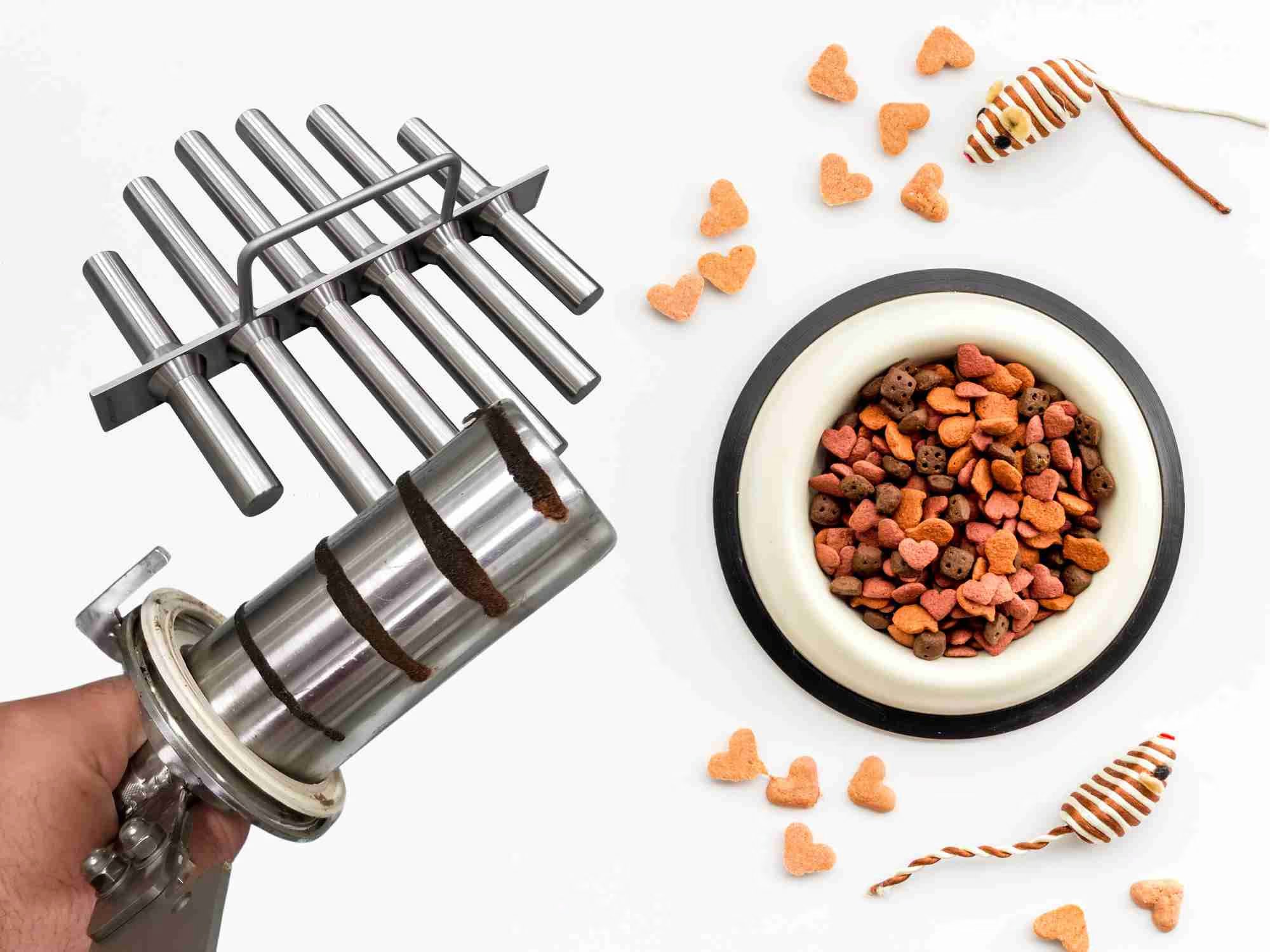 Manufacturing Process
Manufacturing Process
4+ MIN
11/06/2025
Where to Install Magnetic Separators in Pet Food Processing
The complexity of processing, from ingredient handling to packaging, introduces multiple stages where foreign metal fragments can enter the production line. Although many processors understand the importance of magnetic separators in enhancing food safety, uncertainty often arises about the most effective equipment placement for optimal product security and machinery protection.
Effective Placement of Magnetic Separators
Strategically placed magnetic separators is critical for ensuring pet food safety and quality. There are a few locations where installing magnets is most beneficial:
1. Product intakes: Magnetic separators at the product intake stage —for both dry and wet ingredients applications— are essential for removing metal fragments, such as magnetic stones and work-hardened stainless steel, safeguarding machinery, and ensuring incoming materials meet quality standards. This is an important magnet to ensure that the product coming into your process meets your requirements.
2. Post-first stage mixing/wet ingredients processing: After the initial mixing phase, magnetic separators help extract contaminants introduced during processing. This stage reduces the strain on final-stage magnets, especially in cases with high contamination levels.
3. Wet line before canning/packing: In wet pet food production, magnetic separators play a vital role in the canning stage. Proper consideration of flow rate, particle size, and viscosity ensures effective contaminant removal, protecting expensive equipment like twin-screw pumps while safeguarding the final product before packing and metal detection.
4. Dry ingredients processing: Magnet placement during dry ingredient processing depends on factors like flow rate and protection level. Installing separators before extrusion prevents contaminants from being embedded in kibble, streamlining quality control measures and reducing potential hits on final-stage magnets.
5. Dry line before bagging: The final magnet before bagging serves as the last defense against contaminants before products reach consumers. Certified and traceable magnets provide reliable quality assurance and help demonstrate effective preventive measures.
Choosing a magnetic separator for these applications will depend on the flow rate, density, speed, and more.
Top Magnattack® Magnetic Separators for Pet Food Applications
Robust food safety protocols are fundamental to ensuring nutritious and safe pet food while maintaining consumer trust. Product recalls are financially costly and damaging to brand reputation, making comprehensive quality control measures essential.
A single recall incident can impose a significant burden on a production plant, both in terms of product losses and the possible impact on the company's image, not to mention huge potential financial losses. It is critical for manufacturers to realize this risk and have comprehensive quality control measures in place.
The Magnattack expertise and range of magnetic separators can bolster your safety measures and give you peace of mind.
The Mag-Ram® Self-Cleaning Separator is an advanced solution that is highly effective for processing raw materials such as grain, protein meal, and meat and bone meal, as well as for dry ingredient handling and final stages before bagging. Its automatic self-cleaning functionality ensures rapid and efficient removal of ferrous metal contaminants, delivering exceptional performance, minimizing downtime, and maximizing productivity. Additionally, its dedicated contaminant chutes and pneumatic cylinders offer precise individual control, making it simpler than ever to maintain the integrity and purity of pet food products.
Additional innovative solutions include:
Spherical Inline Pneumatic Transfer Magnet: Designed for pneumatically conveyed powders, grains, and premixes, this separator features an aerodynamic structure that eliminates sharp edges, ensuring smooth material flow without causing pressure fluctuations. Its unique magnetic field and strong retention capacity effectively manage high-velocity applications.
Round Nose Plate Magnet: Typically placed before high-value processing equipment like grinders, shredders, dicers, and emulsifiers, this magnet is designed to extract and remove metal contaminants from applications involving chicken frames, whole muscle products, poultry, beef, and other materials. It is also highly effective in dry ingredient processing.
Emulsion & Slurry Pipeline Separator: Specifically designed for viscous applications such as meat emulsions and slurries, this separator ensures the purity of slurry mixtures. Its' coned body eliminates pooling areas and air pockets, facilitating a smooth flow of liquid products. Additionally, its innovative design, including Acutex® Probes, strikes the perfect balance between magnet strength and open space, maximizing product-to-magnet contact for optimal efficiency.
Rapidclean® Drawer Magnet: Specifically designed for dry ingredients such as meals, powders, grains, and premixes, this magnetic separator features large-diameter RE80® magnet bars to ensure maximum retention of even the tiniest, weakly magnetic fragments. It effectively collects and retains metallic particles from dry ingredients with precision. The Rapidclean cleaning feature allows for easy removal of contaminants without the need for direct magnet handling.
Mag-Ram Self-Cleaning Separator
Rapidclean Drawer Magnet
Magnattack®: A Trusted Partner in Pet Food Safety
With over 50 years of experience in the food processing industry, Magnattack® offers an innovative way to approach foreign metal control. Thanks to our cutting-edge technology and commitment to excellence, we've built a reputation as a trusted provider for pet food facilities worldwide. Don't compromise on the safety of your production process —explore our listing of metal separators for pet food applications today!
We are exhibiting at the Pet Food Forum in Kansas City, MO, USA. April 28-30, 2025 —visit us in booth #1602!
By Magnattack
Source: All Pet Food Magazine
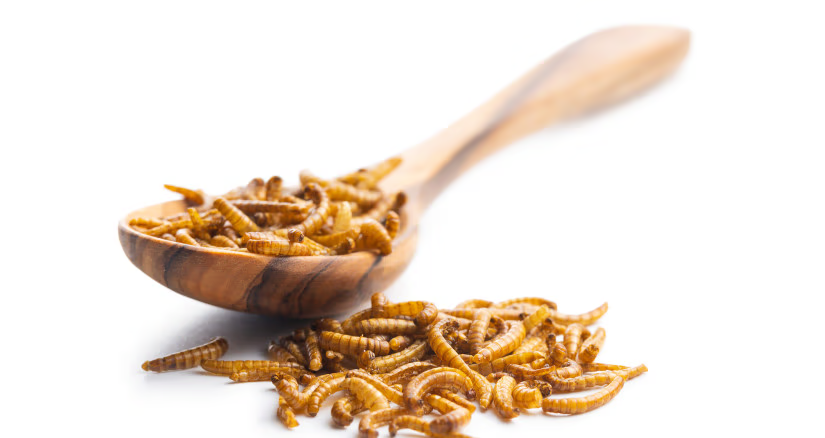 Insect Based
Insect Based
5+ MIN
10/06/2025
Insect Protein in Pet Food: Sustainable Breakthrough or Strategic Media Push?
Advocates argue that insect protein offers a climate-smart solution with a significantly lower environmental footprint, addressing the pet food industry's growing demand for protein.
However, the question remains: is the media buzz around insect protein grounded in its real-world potential, or is it being strategically driven by well-funded startups and investor-backed companies eager to validate their business models?
This article delves into the environmental benefits, commercial pressures, regulatory challenges, and market realities of insect protein in pet food, exploring whether the excitement surrounding it is driven by genuine consumer demand or the influence of corporate media strategies.
Photo by TDyuvbanova
The Environmental Promise
The primary insect species used in pet food—black soldier fly larvae (BSFL) and mealworms—have gained recognition for their efficiency in converting feed into protein. Insects like BSFL achieve feed conversion ratios (FCRs) as low as 1.5:1, meaning they require significantly less feed to produce protein compared to traditional livestock like beef (6–10:1) or pork (3–5:1).This efficiency is one of the key selling points of insect protein, making it an attractive solution for improving the sustainability of the pet food industry.
In addition to feed efficiency, insect farming results in significantly lower greenhouse gas (GHG) emissions when compared to traditional livestock farming. According to studies, beef emits 27–60 kg CO₂-eq/kg of protein, while poultry emits 6–20 kg CO₂-eq/kg. In contrast, black soldier fly larvae emit just 1–2.5 kg CO₂-eq/kg, which is a substantial reduction in emissions. These figures suggest that insect protein could play a significant role in reducing the carbon footprint of pet food production.
Another advantage of insect farming is the reduction in land and water use. Insects like BSFL can be farmed in vertical, climate-controlled environments, reducing the need for vast amounts of land and minimizing natural habitat destruction. Unlike traditional livestock farming, which requires large expanses of land for grazing, insect farming can be done in compact facilities, making it more land-efficient.
Moreover, many insect farms use food waste or agricultural by-products as feed, creating a circular economy that reduces food waste while providing a new protein source. This approach aligns well with sustainability goals by helping to tackle food waste issues, assuming regulatory frameworks permit such feed inputs.
The Less Publicized Challenges
While insect protein holds promise, there are several challenges that must be addressed to make it a viable and widespread ingredient in pet food.
High Processing Energy
Farming insects is resource-efficient, but the process of turning insects into protein meal or oil is energy-intensive, often requiring drying and grinding. These steps increase the overall energy footprint of insect protein production, potentially offsetting some of its environmental benefits.
Regulatory Hurdles
Regulatory challenges also pose a significant barrier to the widespread adoption of insect protein in pet food. In the U.S., the Association of American Feed Control Officials (AAFCO) has approved BSFL for use in adult dog food, but not yet for cats or for all life stages of dogs.
Furthermore, regulations around the type of feed that insects can consume—such as restrictions on the use of post-consumer food waste—limit the sustainability potential of insect farming in some regions.
Scalability and Cost
Scalability remains a critical issue for insect protein production. While the technology for insect farming is promising, it is not yet able to meet the demand for mass adoption in the pet food industry. Insect protein currently costs significantly more than traditional proteins such as poultry meal. As noted in a 2023 Petfood Industry report, insect meal can cost three- to five-times more per kilogram than poultry meal, making it difficult for mainstream pet food companies to integrate insect protein at scale.
Additionally, insect protein remains a niche ingredient in pet food. Consumer perceptions remain a key barrier, but research suggests that educational efforts can help bridge the gap: for example, an ADM surveyrevealed that while only 12% of U.S. pet owners were initially "completely likely" to try insect-based pet foods, that figure rose to 42% after learning about the benefits of insect protein, such as its high digestibility, hypoallergenic properties, and lower environmental impact compared to traditional animal proteins. As awareness grows, insect protein holds promise as a novel, eco-friendly option in the pet food space.
Is the Hype Partly a Media Strategy?
The increasing focus on insect protein in pet food raises the question of whether the media's enthusiasm for insect-based protein is grounded in real-world demand or driven by the commercial interests of well-funded startups.
Over the past five years, companies like Ynsect, Innovafeed, and Protix have raised millions of dollars to fund their insect farming operations. With large amounts of venture capital at stake, there is significant pressure on these companies to create narratives that validate their business models, often by positioning insect protein as a scalable, sustainable solution for pet food.
The focus on sustainability in the media, particularly through partnerships with NGOs and climate-focused events, has also contributed to the narrative that insect protein is the "next big thing." However, it is important to consider that some of these media messages may be influenced by the commercial ties of insect protein companies and the growing investor pressure to generate returns.
Key Takeaways
Insect protein offers significant environmental benefits, including lower emissions, reduced land and water use, and upcycling food waste. However, challenges related to processing energy, regulatory hurdles, cost, and scalability continue to impede widespread adoption. The media's enthusiasm for insect protein may be fueled in part by the commercial interests of well-funded startups, leading some experts to question whether the hype surrounding insect protein is ahead of real-world market demand.
As the industry continues to evolve, it will be essential for stakeholders to balance the environmental benefits of insect protein with the practical realities of scaling production and meeting regulatory requirements.
About the Author
Lee Ann Hagerty is Director of Customer Enrichment and Consumer Insights on the BSM Product Innovation team with 29+ years in the pet food industry, working for Iams/Eukanuba, Procter & Gamble, and Mars Pet Care. She brings a unique combination of project management skills with consumer insights, product design, animal nutrition, and sensory science which drives an in-depth understanding of the pet and consumer. Lee Ann has a passion for helping dogs. Over the last year and a half, she has fostered over 22 dogs. Many of them were senior dogs who had lived their entire lives outside as hunting dogs. She has been a foster pet parent for many years, and it brings her great joy to see these pets find fur-ever homes where they live with families indoors with love and care.
By Lee Ann Hagerty, MBA, BS, AS, CVT, RVT, PAS
Source: BSM Partners
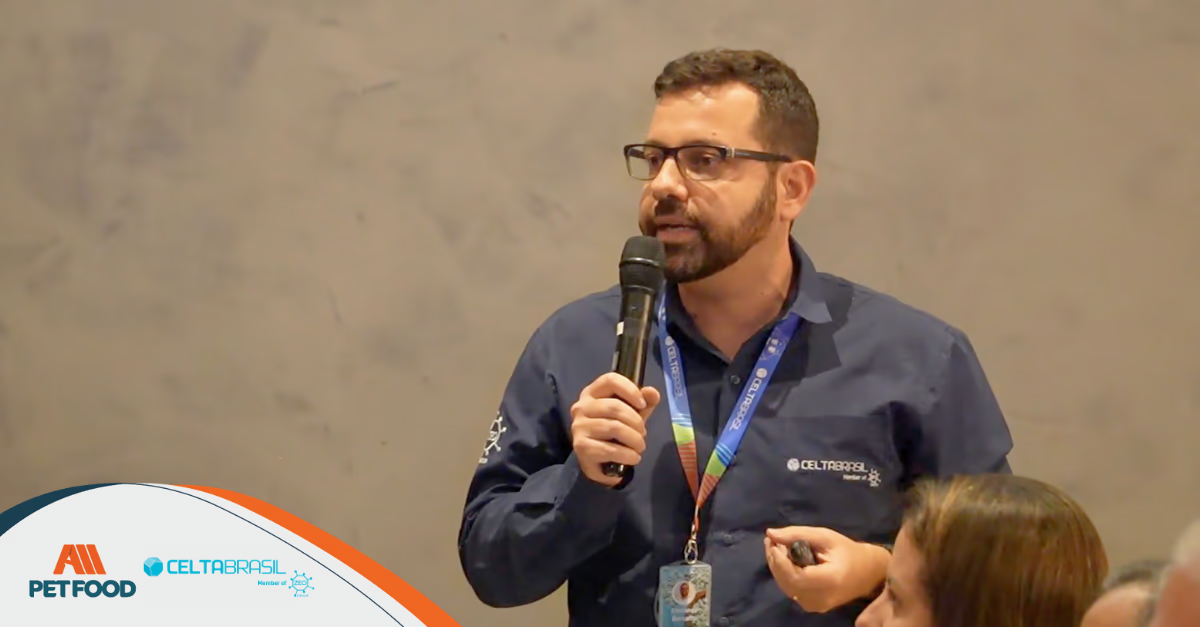 Market Information
Market Information
2+ MIN
06/06/2025
ZeoTalks: Science, Connection, and Applied Knowledge in Animal Nutrition
Originally launched during the pandemic as an online series, ZeoTalks is now presented in multiple formats. You can watch our recorded sessions on YouTube at: Celta Brasil, and we are now also producing content in Spanish on: ZeoGroup ES.
On May 14th, we held a special edition: ZeoTalks – The Science Behind Celpec: Analysis of Proven Results, at the Coco Bambu Anhembi restaurant. The event was designed as a technical complement to FENAGRA, the leading animal nutrition trade fair in Latin America, and brought together key professionals for an evening of networking and scientific discussion on a topic that is our specialty: zeolites.
We welcomed 75 professionals from more than 40 companies, including major animal nutrition brands, veterinarians, technical consultants, and renowned universities.
The keynote speaker was Dr. Flávia Borges Saad, one of Brazil's top experts in companion animal nutrition. Her presentation highlighted the 20-year partnership between Celta Brasil and the Federal University of Lavras, focusing on the results of various scientific studies on Celpec—a functional ingredient based on natural clinoptilolite zeolite, developed to reduce fecal odor, improve stool consistency, and adsorb mycotoxins such as aflatoxins, promoting better intestinal health.
In addition to Dr. Flávia, the following speakers contributed to the program:
Beatriz Borsatto, Marketing Manager at ZeoGroup, who moderated the event;
Fernando Borsatto, CEO of ZeoGroup and President of INZA, who opened the evening by sharing the group's technical expertise in zeolites and its commercial reach in over 30 countries;
Ludmilla Bomcompagni, Technical Lead at Celta Brasil, who presented on our R&D structure and our commitment to rigorous scientific validation.
The event was highly praised by attendees, who emphasized both the quality of the technical content and the event's organization.
Celta Brasil is recognized as a leader in the development and commercialization of natural zeolite-based products and will continue to promote platforms like ZeoTalks to connect science, innovation, and the market.
Follow our upcoming ZeoTalks and initiatives on social media: @celtabrasilzeogroup.
Event recap post: https://www.instagram.com/reel/DJ6-RVQtgB2/?igsh=NGRhMWo4bGtxd25t
Source: Celta Brasil
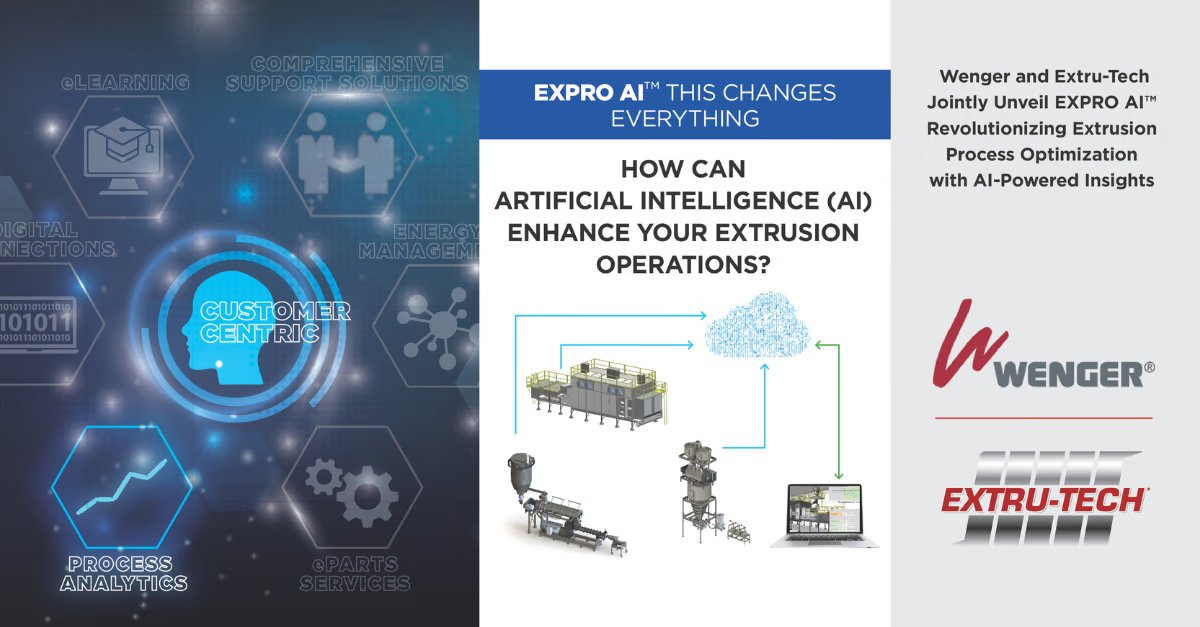 Extrusion
Extrusion
2+ MIN
05/06/2025
Wenger and Extru-Tech Jointly Unveil EXPRO AI Revolutionizing Extrusion Process Optimization with AI-Powered Insights
Introducing EXPRO AI™: The Future of Extrusion Operations
EXPRO AI™ employs sophisticated AI predictive modeling to analyze historical and real-time process and quality data. By identifying relationships between critical data points, specifications, and operational anomalies, EXPRO AI™ delivers actionable insights that enable manufacturers to predict product quality outcomes and prescribe ideal process setpoints. The result is a significant reduction in process variability and consistently superior product quality.
Key Features and Benefits:
Real-Time Digital Twin Dashboard: Offers real-time situational awareness, empowering operators and managers to make informed decisions on the fly.
Data-Driven Process Optimization: Eliminates guesswork by securely utilizing local data from IIoT devices, historians, and MES systems, ensuring process decisions are based on empirical evidence rather than opinion.
Customized Optimization Models: Tailored solutions per recipe and production line that predict production events.
24/7 Intelligent Operations: Operates continuously without interruptions, serving as an electronic subject matter expert (eSME) that prescribes optimum process parameters for peak performance.
Transforming Industries with Intelligent Manufacturing
EXPRO AI™ is uniquely designed for continuous manufacturing processes and delivers value through improved product yield and quality.
"EXPRO AI™ represents a pivotal advancement in extrusion technology. By leveraging our process expertise and AI based modeling, our clients are able to achieve unprecedented levels of efficiency and product consistency," said Scott Krebs, President of the Wenger Group. "This technology transforms extrusion processes, making them smarter, more adaptive, and highly efficient.
About Wenger
Founded in 1935 in Sabetha Kansas, Wenger Manufacturing is the world's leading supplier of customized extrusion cooking and process systems used to process food, pet food, and aquatic feed. Wenger has offices, manufacturing, and service personnel in the Americas, Europe, and Asia to support customers globally.
About Extru-Tech
With extensive expertise in food, pet food, aquatic feed production, and automated process controls, Extru-Tech serves a global client base. The company provides comprehensive solutions ranging from ingredient handling to extrusion, drying, cooling, coating, and regulatory compliance support.
Contact Information:
Wenger®
15 Commerce Drive
Sabetha, Kansas 66534, USA
Phone: +1 785 284 2133
Email: [email protected]
Website: www.wenger.com
Extru-Tech, Inc.
100 Airport Road
Sabetha, Kansas 66534, USA
Phone: +1 785 284 2153
Email: [email protected]
Website: www.extru-techinc.com
Source: Wenger Group and Extru-Tech Inc.
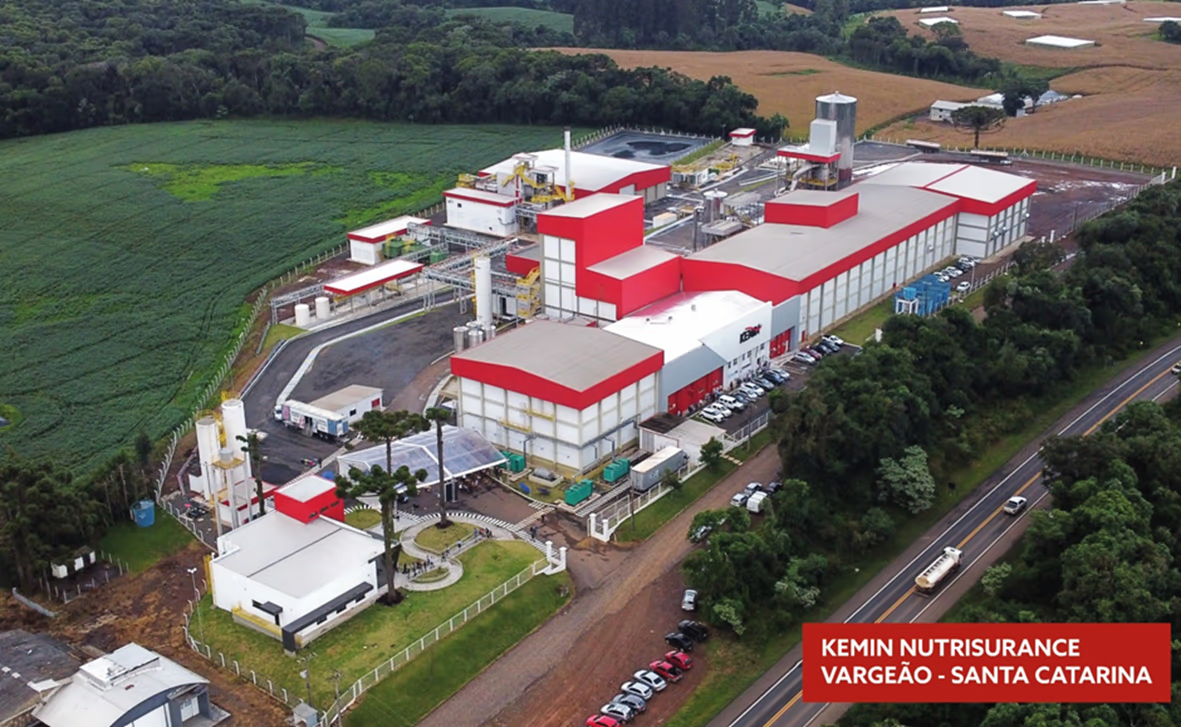 Formulation
Formulation
4+ MIN
04/06/2025
Kemin Nutrisurance: Innovation and Science for Pet Nutrition
In this context, Kemin stands out as a strategic partner for dog and cat food manufacturers, offering innovative solutions that ensure product quality, safety, and palatability. The company combines science and technology to develop functional ingredients that meet pets' nutritional and sensory demands, always prioritizing food quality and safety.
Who We Are: Commitment to Science and Animal Nutrition
Kemin Nutrisurance is the business unit of Kemin Industries dedicated exclusively to the Pet Food & Rendering segment. With over 60 years of global experience in applied science for nutrition and food safety, we continuously invest in research and development to provide advanced solutions that meet the increasing demands of the pet food market.
Our commitment is to enhance the quality of life for companion animals through superior nutrition. This means developing products that not only meet pets' nutritional needs but also contribute to their digestive health and overall well-being. Additionally, we provide specialized technical support to manufacturers, helping them create more efficient and safer formulations.
The pet food industry requires an increasing level of specialization, and Kemin is at the forefront of this evolution. We invest in innovative technologies to ensure pet food is safe, stable, and highly palatable. Our global presence and commitment to innovation make Kemin a leader in the industry.
Our Values and Purpose
At Kemin, we believe that science has the power to transform lives. Our purpose is to develop safe and effective solutions to ensure that pet food is as nutritious and delicious as it is safe for consumption.
This mission is built upon core values such as:
Integrity: Commitment to transparency and ethics in all relationships.
Innovation: Continuous investment in research to offer the best solutions.
Quality: High-standard products that meet regulatory requirements and exceed market expectations.
We are convinced that our role in the pet food industry goes beyond simply producing ingredients. Our mission is to contribute to a safer and more innovative sector, raising the standards of quality and animal welfare.
Our Solutions for the Pet Food Industry
Antioxidants: Protection against oxidation
Pet food is highly susceptible to oxidation, a process that compromises product quality and palatability. When ingredients oxidize, changes in flavor and aroma occur, making the food less appealing to animals and reducing its acceptance. Additionally, oxidation can lead to the degradation of essential nutrients, impacting food's nutritional value.
To prevent this issue, Kemin offers natural and synthetic antioxidant solutions that preserve ingredients and provide greater food stability, contributing to balanced and safe nutrition. Our antioxidants are developed with advanced technology to offer prolonged protection, ensuring that pets receive high-quality food for longer.
Food safety: Ensuring healthy products
Food safety is a growing concern in the pet food industry. Microbiological contamination can compromise animal health and damage brand reputation. Additionally, the presence of toxins can pose significant risks to pets, making it essential to adopt effective control strategies.
With advanced solutions for control and preservation, Kemin helps manufacturers ensure safe, risk-free products. Our quality control systems are rigorous and follow international standards to guarantee that food is safe from raw materials to the final product. We work to mitigate risks and provide manufacturers with the tools they need to maintain food integrity over time.
Palatability: Enhancing Pets Eating Experience
A pet food product must not only be nutritious but also flavorful to ensure that pets consume it willingly. Food acceptance is a critical factor for proper nutrient intake and for minimizing waste. If a pet rejects its food, owners may seek alternative options in the market, directly impacting brand loyalty.
Kemin develops solutions that enhance the aroma and taste of pet food, increasing animal acceptance and providing a more enjoyable eating experience. We work with innovative ingredients and advanced technological processes to create palatants that stimulate pets' appetites and ensure a balanced, pleasurable diet.
Health and Nutrition: Functional Ingredients for Animal Well-Being
Beyond ensuring safety, stability, and taste, we also invest in functional ingredients that promote digestive health, immunity, and overall pet well-being. With a focus on precision nutrition, we develop solutions that add value to products and contribute to healthier pet lives.
Functional nutrition is becoming a major trend in the pet food market, and Kemin is dedicated to offering ingredients that go beyond basic nutrition. Our solutions include components that support gut microbiota balance and strengthen the immune system, helping manufacturers create food that truly makes a difference in pets' lives.
Commitment to Innovation
Innovation is one of Kemin Nutrisurance's core pillars. With state-of-the-art research centers and a team of dedicated experts, we develop science-based solutions to meet market needs. We continuously invest in new technologies that reduce waste and optimize the supply chain.
Global Presence and Personalized Support
With operations in multiple countries, Kemin is strategically positioned to serve customers worldwide. Our personalized service and specialized technical support ensure that every pet food manufacturer has access to the best solutions for their specific needs. Additionally, our global presence allows us to closely monitor market trends and adapt our solutions to different regulatory requirements and realities.
As a result, Kemin Nutrisurance has become a reference in the pet food industry, offering innovative and scientifically proven solutions to ensure safer, more nutritious, and tastier food for dogs and cats. Our commitment to science and quality places us at the forefront of the sector, contributing to pet well-being and owner satisfaction. With a strong portfolio and a highly skilled team, we continue to transform pet nutrition and elevate industry standards.
If your goal is to provide the best for companion animals, Kemin is the ideal partner for this journey.
By Kemin Nutrisurance
Source: All Pet Food Magazine
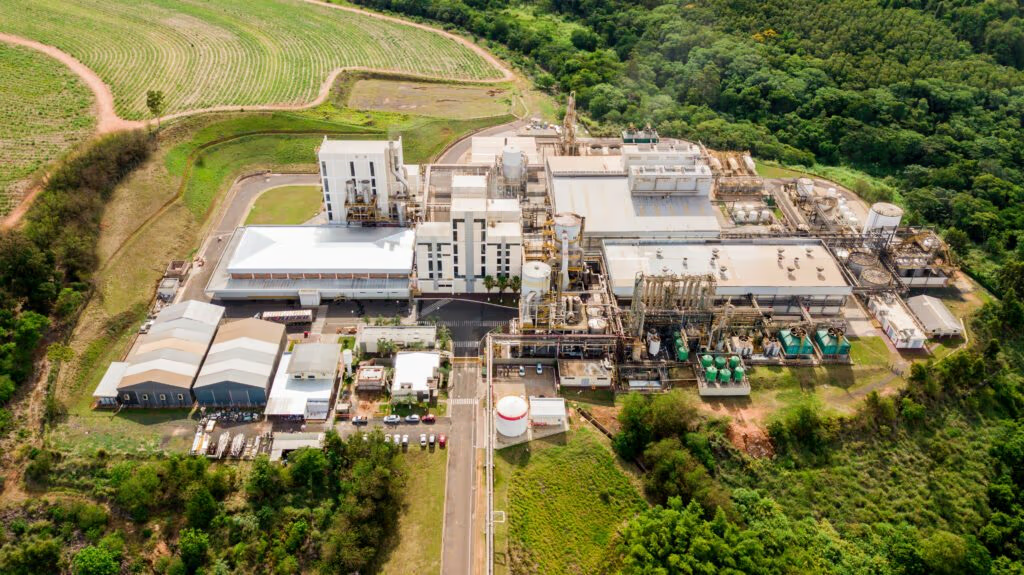 Market Information
Market Information
3+ MIN
03/06/2025
Lesaffre and Zilor enter a joint venture
By combining strengths, Lesaffre and Zilor will unlock significant mutual benefits to deliver enhanced natural yeast-based ingredient solutions to customers around the world. This innovative partnership will accelerate the delivery of customer-centric solutions. It will rely on common values, recognized sales and technical expertise and on a global industrial network including Biorigin's production unit in Quatá/São Paulo, combined with a vertical and sustainable supply chain.
Zilor will continue to run its production unit for ethanol and brewer's spent yeast for animal nutrition. The yeast-based products for pet and livestock nutrition produced at the Lençóis Paulista (SP) and Macatuba (SP) facilities will remain under the management and commercialization of Zilor.
Lesaffre's business units will benefit from this joint venture and will reinforce their position as key players in the human food, animal nutrition, pet supplement and aquaculture markets.
The Quata/Sao Paulo site has world leading performance in carbon neutrality as a result of using biomass as an energy source. Moreover, Lesaffre and Zilor remain strongly committed to minimizing their environmental impact through the implementation of best practices and ongoing enhancements.
The strategic partnership between Lesaffre and Zilor was first jointly announced on October 4, 2024.
ABOUT LESAFFRE
Lesaffre is a key global player in fermentation for more than a century with a €3 billion turnover. Established on all continents with 80 production sites in 55 countries, it counts 11,000 employees and more than 100 nationalities. On the strength of this experience and diversity, we work with customers, partners and researchers to find ever more relevant answers to the needs of food, health, naturalness and respect for our environment. Thus, every day, we explore and reveal the infinite potential of microorganisms.
To nourish 9 billion people, in a healthy way, in 2050 by making the most of our planet's resources is a major and unprecedented issue. We believe that fermentation is one of the most promising answers to this challenge.
Lesaffre – Working together to better nourish and protect the planet
More information on www.lesaffre.com
ABOUT ZILOR
Zilor is a Brazilian company with 79 years of experience in the sugar-energy sector. It produces sugar, ethanol, clean electricity, and natural ingredients for animal nutrition — all derived from sugarcane.
With 4,400 direct employees, Zilor operates four agro-industrial units in the countryside of São Paulo State (Lençóis Paulista, Macatuba, Quatá, and Lucélia), with a processing capacity of 13.8 million tons per harvest. This positions the company among the largest producers in the country, serving the growing demand for clean energy and food in a constantly changing world.
Zilor is a founding member and significant shareholder of Copersucar, holding a 12% stake in the world's largest global trader of sugar and ethanol, present in over 70 countries.
A reference in social and environmental management, Zilor adopts sustainable practices such as 100% mechanized harvesting and invests in social projects focused on education, culture, health, safety, and the environment — promoting development in the communities where it operates.
Zilor – Creating value and promoting societal well-being by transforming innovative, natural agricultural resources into food and energy.
More information at: www.zilor.com.br
Join us in conversation on LinkedIn: www.linkedin.com/company/zilor
Source: Biorigin - Zilor
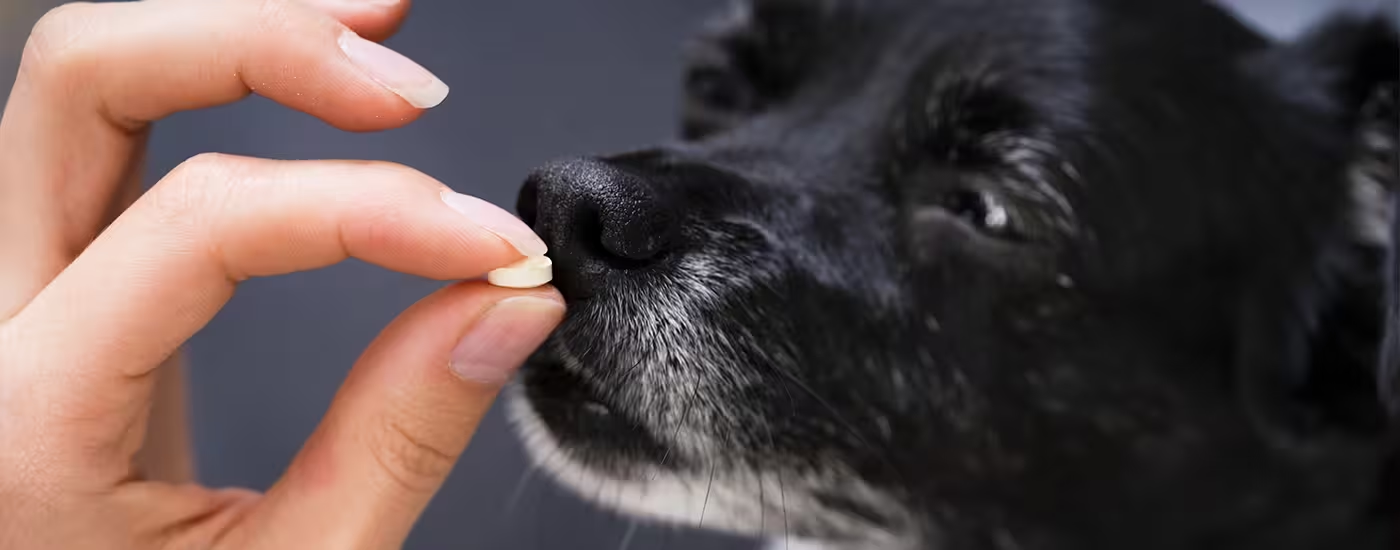 Palatants
Palatants
2+ MIN
02/06/2025
Solutions for drugs and dietary supplements
Pet parents sometimes struggle to administer oral drugs and dietary supplements.
Giving daily medication for treatment of chronic disease can be especially frustrating, resulting in unpleasant moments for both the pet and the pet parent.
Bad experience while administering drugs or dietary supplements may have significant impacts:
SPF palatability solutions are your best ally to increase drug and dietary supplement acceptance by pets and guarantee compliance of pets in taking the treatment and pet parents in giving the treatment. Increased palatability is your best ally to make pet parents happy and pets healthy.
Our solutions for drugs and supplements
Solutions for every galenic to delight each pet!
Palatability enhancers are your best ally to achieve compliance. Thanks to their holistic knowledge of pets, products, and pet parents, SPF solutions have been improving the taste of pills, tablets, chews, pastes, and liquids for more than 15 years.
Our solutions have a minimum shelf life of 12 months and we can guarantee recipe stability for the lifetime of your drug.
Find the right SPF solution for each of your galenic and significantly increase the palatability performance of your product!
Adapted to every galenic
Palatability studies conducted on a placebo tablet demonstrate that SPF palatability solutions significally improve the consumption of tablets by cats and dogs.
Catering to the specific preferences of each pet
SPF researches have demonstrated that pets express different preferences, which can be innate or acquired. Cats and dogs have different anatomical and sensorial equipment, which explains why they respond differently to smells and tastes.
SPF product portfolio includes a specific range of palatability solutions for cats and a specific one for dogs.
Vegetable-based palatability solutions
To meet the challenges of the growing needs of the planet (animal protein availability, food safety crisis, custom barriers, and sustainability), SPF researched and developed vegetable-based palatability solutions.
The promise of a sustainable generation of high-level palatability without animal proteins solutions is no longer a dream for manufacturers and will delight cats and dogs around the world.
Source: Symrise
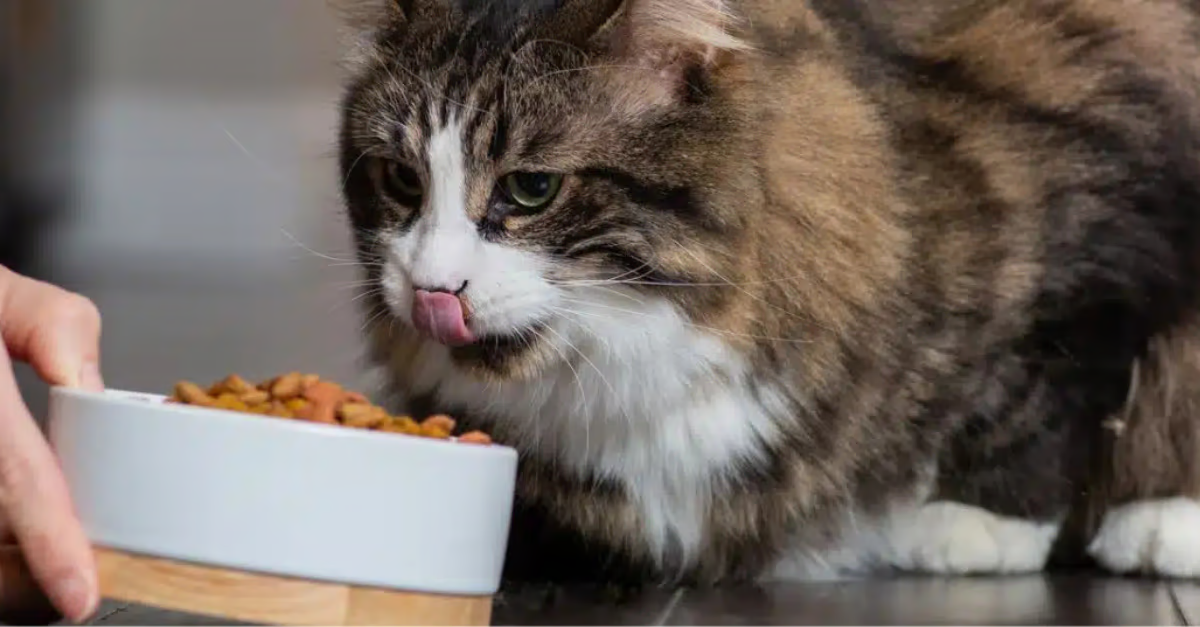 Palatants
Palatants
2+ MIN
30/05/2025
How can palatants enhance the appeal of gently cooked meals?
Over the years, pet nutrition has evolved from feeding table scraps and home-cooked meals to biscuits, kibble, wet pet food and, now, a return to home-cooked style meals. Why, after decades of innovation and refinement in pet food production, has the industry circled back to this approach? The answer lies with the consumer.
Pet owners today are faced with an overwhelming array of options when it comes to pet food, from kibble to raw, freeze-dried and wet diets. The decision-making process can be daunting. With so many choices available, it's challenging to determine which is best, and navigating the many labels and packages often adds to the confusion. This is where gently cooked products come into play.
Trust and transparency
Gently cooked pet food has seen rapid growth in recent years, and its success can be attributed to a few key factors. First, the straightforward packaging and labeling make it easy for pet owners to understand what they're buying. When opening a package, the sight and smell of the food enhance the trustworthiness of the product. Additionally, the inclusion of vegetables and herbs appeals to pet owners' desire to provide the healthiest options for their pets.
Building the right customer experience
While gently cooked meals tap into the desire for wholesome, home-cooked food, they come with some challenges from a palatability perspective. The cooking methods used in this category – such as steaming, sous-vide or low-temperature cooking – result in different flavor profiles and levels of palatability. Also, the appearance of the food, including its color and texture, can be influenced by the cooking method.
To enhance palatability, the right palatants are essential. These must be adjusted to the cooking technique to help achieve the ideal flavor profile and improve the product's attractiveness.
The goal is to replicate the experience of home-cooked meals, where the smell and appearance of the food are just as important as the taste. When pets enjoy every bite, it not only makes them happy, but also reinforces the trust pet owners have in the product.
Expert collaboration
AFB International specializes in collaborating with manufacturers to find the most suitable palatants for gently cooked pet food products. The company's team of application technologists is dedicated to helping producers select the best flavor solutions, and offers training and insights tailored to each manufacturer's needs.
Read the paper here!
Source: AFB International
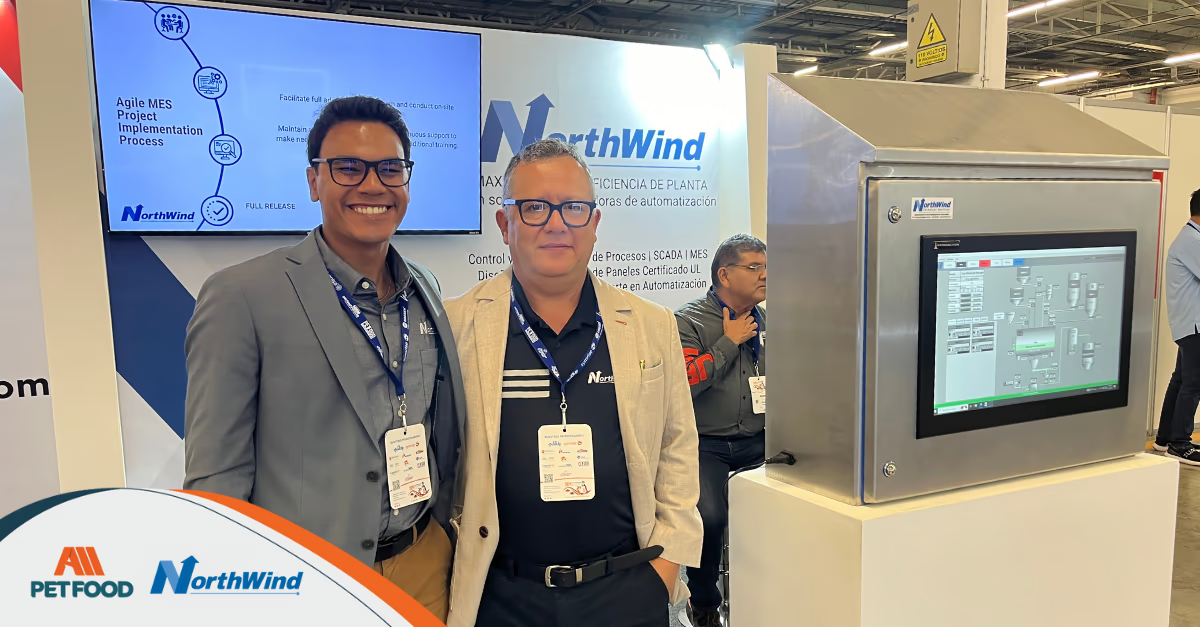 Automation
Automation
2+ MIN
29/05/2025
NorthWind: Smart Automation and Forward-Looking Vision for the Pet Food Industry
NorthWind Technical Services specializes in delivering comprehensive technological solutions for industrial automation, designed to improve control, efficiency, and quality throughout production processes. Their approach combines digital tools, data analytics, and personalized technical support, tailored to meet the specific needs of each plant. The company also develops intelligent platforms that enable strategic decision-making based on real-time information, helping optimize operations, reduce waste, and anticipate potential failures. Their commitment to innovation is reflected in their ability to integrate advanced technologies such as artificial intelligence into demanding industrial environments. NorthWind has a strong presence in industries such as pet food, food & beverage, milling, and grain handling, where they combine deep technical expertise with an innovative mindset, offering everything from process control to AI-powered tools. Key Presence at Upcoming Industry Events NorthWind will be participating in the following three major events, showcasing their solutions and sharing their vision for the future of industrial automation in the sector: Extru-Tech Extrusion Seminar Aldo Martinez, NorthWind's representative, will give the lecture 'The Future Driven by Automation and Artificial Intelligence,' where he will explore the use of AI in production environments, with a focus on tools like PlantIQ™, the company's system for applying machine learning and analytics inside a plant. EXPO PACK Guadalajara (Booth J-1736) At this event, NorthWind will showcase its automation solutions for pet food, food & beverage, milling, and grain handling industries. Aldo Martinez will also speak on June 10 at 4:00 PM on the Innovation Stage, addressing how digital transformation, powered by artificial intelligence, is reshaping operational models and driving sustainable growth in the digital era. Foro Mascotas Pet Food 2025 (Booth A9) NorthWind will have a dedicated exhibition space for their automation solutions tailored to the pet food sector, featuring demos and real-time technical guidance. With a vision focused on efficiency, traceability, and continuous innovation, NorthWind positions itself as a strategic partner for companies aiming to transform their operations from the ground up. Learn more about their solutions at: https://www.northwindts.com/products/mes-solution/ Source: All Pet Food
 Nutrition
Nutrition
4+ MIN
28/05/2025
Pet Food Quality: A More Holistic Approach to Food Safety
Managing Inherent Safety & Quality Risks
Microbial hazards not only threaten pet safety but also create public health risks due to the potential for direct human contact with pet food. To protect their business and brand from risks related to pathogen contamination, pet food manufacturers should implement microbial management strategies throughout the value chain, including:
Implementing Good Manufacturing Practices (GMPs) and Hazard Analysis and Critical Control Points (HACCP) programs
Providing ongoing training to employees on quality, food safety and hygiene practices
Developing regular testing plans on finished products
Maintaining a clean and hygienic production and packaging environment
Sourcing quality raw materials from reputable suppliers and conducting supplier audits
Utilizing treatment intervention strategies to ensure safety and quality compliance
Implementation of these steps is necessary to ensure the safety and quality of pet food and to mitigate recall risks. However, understanding microbial challenges in raw materials, their impact to quality and how to effectively manage them is also vital to maintain freshness, shelf-life and palatability of pet food.
Protecting Your Quality and Investment
Ensuring the safety and quality of pet food is a challenging and complicated process for pet food manufacturers and renderers alike. Variability in raw materials, complex supply chains, and various product formats and processes can lead to oxidative deterioration and microbial contamination in both ingredients and the pet food itself.
Antioxidants are commonly used to manage quality, improve shelf-life, and minimize impact to palatability due to oxidation. However, antioxidants do not help with microbial issues. Managing microbial risks through the value chain (Figure 1) can be just as important as controlling oxidation and, in some situations, can help support the effectiveness of the antioxidant.
Microbial impacts to pet food begin as early as the initial raw material collection, such as when animal processing co-products are converted into valuable protein meals and fats that will become components of a pet food diet. At this early stage, high moisture levels, presence of endogenous bacteria and enzymes and elevated temperatures can lead to rapid microbial growth, hydrolysis of fats and breakdown of proteins.
Hydrolysis of triglycerides results in elevated free fatty acids (FFAs) levels in rendered fats and protein meals, which can impact pet food in two ways – reduced palatability and increased rate of oxidation. It is well known that elevated FFAs can have an undesirable impact on palatability of pet food. Additionally, FFAs are generally more prone to oxidation than trigylcerides1, and thus can reduce shelf-life of rendered fats, protein meals and ultimately finished pet food.
The breakdown of proteins can happen in both rendered raw materials and fresh or frozen meats. Protease enzymes hydrolyze proteins into peptides and amino acids, and amino acids can be further broken down into biogenic amines (BA). In low concentrations, BAs can play an important role in many physiological functions within the body. However, at high concentrations BAs have been shown to negatively impact palatability in both cat and dog food2,3 and may pose risks to animal health.4,5,6
Figure 1: Pet Food Value Chain
An important first step in your food safety plan is to address the microbial quality concerns as early as possible in the process to minimize the downstream impacts on freshness, safety and quality. Using freshness control treatments like ALLINSUR™ and RENTERRA™ can help limit FFAs and control biogenic amine formation in raw materials thereby helping to ensure pet food is safe, high quality, fresh, and nutritious. Learn more about Food Safety Solutions from Kemin.
About the author
Jim has been at Kemin for over 30 years fulfilling a variety of roles in quality control, research and development, and technical services.
References
1 Theodore P. Labuza & L. R. Dugan Jr. (1971) Kinetics of lipid oxidation in foods, C R C Critical Reviews in Food Technology, 2:3, 355-405, DOI: 10.1080/10408397109527127
2 Kemin Source Document TPAS-22-2326
3 Kemin Source Document US21F276
4 Esposito F, Montuori P, Schettino M, Velotto S, Stasi T, Romano R, Cirillo T. Level of Biogenic Amines in Red and White Wines, Dietary Exposure, and Histamine-Mediated Symptoms upon Wine Ingestion. Molecules. 2019 Oct 8;24(19):3629. doi: 10.3390/molecules24193629. PMID: 31597389; PMCID: PMC6804232.
5 Ruiz-Capillas C. and Herrero A.M. (2019). Impact of biogenic amines on food quality and safety. Foods. 8: 1-16.
6 Ten Brink B., Damink C., Joosten H.M.L.J., Huis in't Veld J.H.J. (1990). Occurrence and formation of biologically active amines in foods. International Journal of Food Microbiology. 11: 73-84.
By Jim Mann, Global Platform Manager: Antioxidants & Food Safety | Kemin Nutrisurance
Source: Kemin Nutrisurance
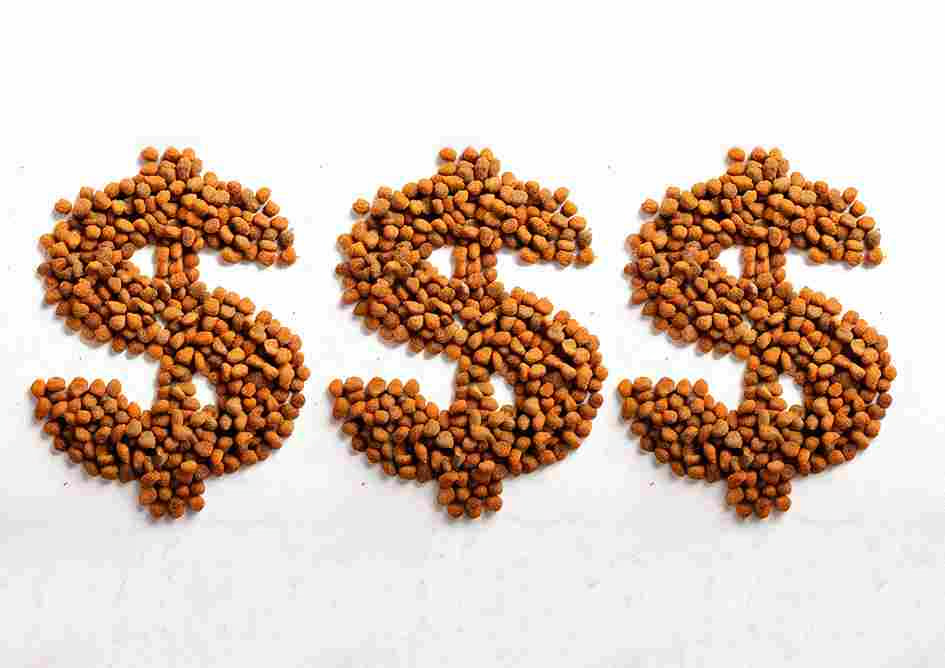 Market Information
Market Information
2+ MIN
27/05/2025
Por Iván Franco
The New Industrial Limit: Millionaire Investments in Pet Food
With investments reaching 1,000 million dollars in some years, the industry has consolidated but also became an attractive point for the national and international capital markets.
Why is it Invested in Pet Food?
Pets are no longer just companion animals. Today, they are considered family members. This cultural change has redefined consumption, boosting sustained demands for specialized, fresh, healthy, and convenient products. Companies got the message and are answering with huge investments in infrastructure designed for efficient production and to serve the local market as well as the exporting one.
In addition, there is an important item: markets in the region are intense producers that do not generally depend on importations from other countries or regions. Building their own infrastructure is essential in the pet food sector.
Key Investments: From the North of Mexico to Patagonia
From Mexico to Argentina (including Chile, Costa Rica, and Bolivia), investments are geographically distributed but have the same goal: increase capacity, meet the growing demands, and eventually, prepare themselves for exporting. There is a graphic of the main bids in the industry below:
Latin America: Main Investments in Pet Food Mills
Representative Cases
Nestlé Purina in Mexico: It realized a significant investment of more than 220 million dollars in Silao. Its approach aims to the internal growth and export potential with new dry and wet food lines.
Carozzi: Consolidated its leadership in the South Cone with two clear goals: to expand its facility in Chile and build a strategic plant in Peru. Its brands (Master Dog and Master Cat) are regional symbols.
What Explains this Boom?
The reasons for this phenomenon are different and powerful:
Culture of well-being: With pet humanization, nutritional needs have been treated with the same rigor as one family member.
Sustained and anticyclical demand: The industry demonstrated resilience even in critical moments. Families do not spend less on their pets.
Competitive conditions: Latin America offers access to raw materials, relatively low production costs, and trade agreements that allow exporting to multiple destinations.
Pet demographic growth: Over 200 million dogs and cats are in the region. This number continues to grow, fostering industry drivers.
An Industry with Soul and Vision of the Future
Pet food is no longer a secondary category on supermarket shelves or a marginal line in the agro-industry portfolio. Today, it is one of the industries with more strategic value for regional development: it offers employment, seeks constant innovation, and aligns with consumer's new priorities (health, sustainability, and advantages).
Investments in Latin America are not a coincidence. They are a clear sign that the sector is growing and show that those who rely on improving their capacity and sophistication will achieve cost-effectiveness and leadership.
By Iván H. Franco
Source: All Pet Food Magazine
 Sustainability
Sustainability
5+ MIN
23/05/2025
How Rendering is Recycling: The Role of Rendering in Pet Food Production
The work that renderers do not only supports sustainability but also plays a vital role in maintaining the safety and quality of the products pet food manufacturers deliver to consumers.
Rendering is, in fact, a form of recycling—a process that converts inedible material from animal production that might otherwise go to waste and converts them into useful, high-quality ingredients. But what exactly is rendering, and how does it contribute to a more sustainable world? In this blog, we'll explore the key facts about rendering and why it's a process that we should all support and understand.
What is Rendering?
Rendering is a highly regulated and specialized process that involves converting animal by-products—such as meat scraps, bones, fats, and trimmings—into useful materials like meat and bone meal, fat, and protein meals. These ingredients are often used in pet food production, livestock feed, biofuels, oleochemicals and even fertilizers.
Roughly 50% of an animal is considered inedible by Americans due to consumer preferences. While these animal by-products are typically viewed as waste by many, rendering transforms them into essential ingredients that support animal nutrition, health, and welfare. It's a process that reduces the environmental footprint of animal agriculture by preventing waste and lowering emissions. Rendering is truly recycling in its purest form, as it takes materials that would otherwise be discarded and gives them a second life.
The Environmental Benefits of Rendering
Rendering not only recycles valuable nutrients but also helps reduce the environmental impact of waste in the food supply chain. According to the North American Rendering Association (NARA), rendering is an efficient way to recover animal by-products and keep them from ending up in landfills, where they could contribute to methane emissions—a potent greenhouse gas.
By turning these by-products into valuable ingredients, rendering reduces the demand for new raw materials, conserves natural resources, and lowers energy consumption. Each year, renderers recycle and repurpose approximately 31.4 billion pounds of fat, oil, and protein products into nutritious pet food, biodiesel, and countless other useful items — making rendering one of the most sustainable ways to reduce food waste.
Facts About Rendering: A Deeper Look
Rendering is often underappreciated, so let's dive into a few key facts about the process and its many benefits, many of which are supported by NARA:
Rendering reduces waste: By recycling animal by-products, rendering prevents them from entering landfills, thus reducing the overall waste burden on the environment. These by-products can come from food processing plants, slaughterhouses, and even restaurants and grocery stores, all of which contribute to the massive amounts of inedible waste with the potential to be upcycled into valuable sources of fats and proteins.
Rendering is safe and regulated: The rendering industry is highly regulated by government agencies such as the U.S. Department of Agriculture (USDA) and the Food and Drug Administration (FDA). This ensures that rendered products meet strict safety standards and are safe to use in pet food, livestock feed, and other products.
Rendering is a key ingredient supplier for pet food: Many pet food ingredients—such as meat and bone meal, poultry by-product meal, and a variety of animal fats—are the result of the rendering process. These high-quality ingredients provide essential nutrients that keep pets healthy and nourished.
Rendering supports sustainability: The rendering process is an integral part of the sustainability of animal agriculture. By converting waste into useful products, rendering helps reduce the need for additional natural resources, conserving water, land, and energy.
Rendering helps reduce carbon footprint: The rendering industry is a significant player in reducing the carbon footprint of food production by ensuring that food and animal agriculture waste is converted into usable products rather than releasing harmful gases like methane into the atmosphere.
For more detailed facts on rendering and its importance to sustainability, we encourage you to visit NARA's Facts about Rendering page. The organization provides a wealth of information on the many ways rendering contributes to reducing waste and supporting sustainable practices in the pet food and agriculture industries.
The Role of Kemin Nutrisurance in Rendering
At Kemin Nutrisurance, we provide innovative solutions to support the rendering industry. Our products help renderers preserve the quality and freshness of their ingredients, ensuring that the pet food and other animal feed products made from rendered materials are safe and nutritious. Through a combination of antioxidants, antimicrobials, and preservatives, we help prevent the rancidity and spoilage of rendered products, which not only extends shelf life but also maintains the quality, safety and efficacy of these ingredients.
We are proud to partner with industry leaders, such as those at NARA, to continue driving innovation in the rendering process and to improve the sustainability of the pet food industry as a whole. Together, we're working to promote the many environmental benefits of rendering, making it clear that rendering is not only recycling—it's a crucial step in building a sustainable future.
Why Rendering Matters
Rendering is an essential and sustainable practice that serves multiple purposes: it recycles waste, supports the pet food industry, conserves resources, and reduces our environmental footprint. At Kemin Nutrisurance, we are proud to support renderers with products designed to keep rendered ingredients fresh, safe, and high-quality, ultimately helping the pet food industry thrive in a sustainable and responsible way.
Rendering is recycling in its truest form, and it's a process that we should all recognize and support. By continuing to work with industry leaders like NARA and pushing the boundaries of innovation, Kemin Nutrisurance is committed to promoting the environmental, economic, and nutritional benefits of rendering for a sustainable future.
For more information on how Kemin Nutrisurance is helping renderers improve product safety and freshness, visit our solutions for rendering page.
Together, let's support the circular economy and keep moving toward a more sustainable future.
About the author
Jim has been at Kemin for over 30 years fulfilling a variety of roles in quality control, research and development, and technical services.
By Jim Mann, Global Platform Manager: Antioxidants & Food Safety | Kemin Nutrisurance
Source: Kemin Nutrisurance
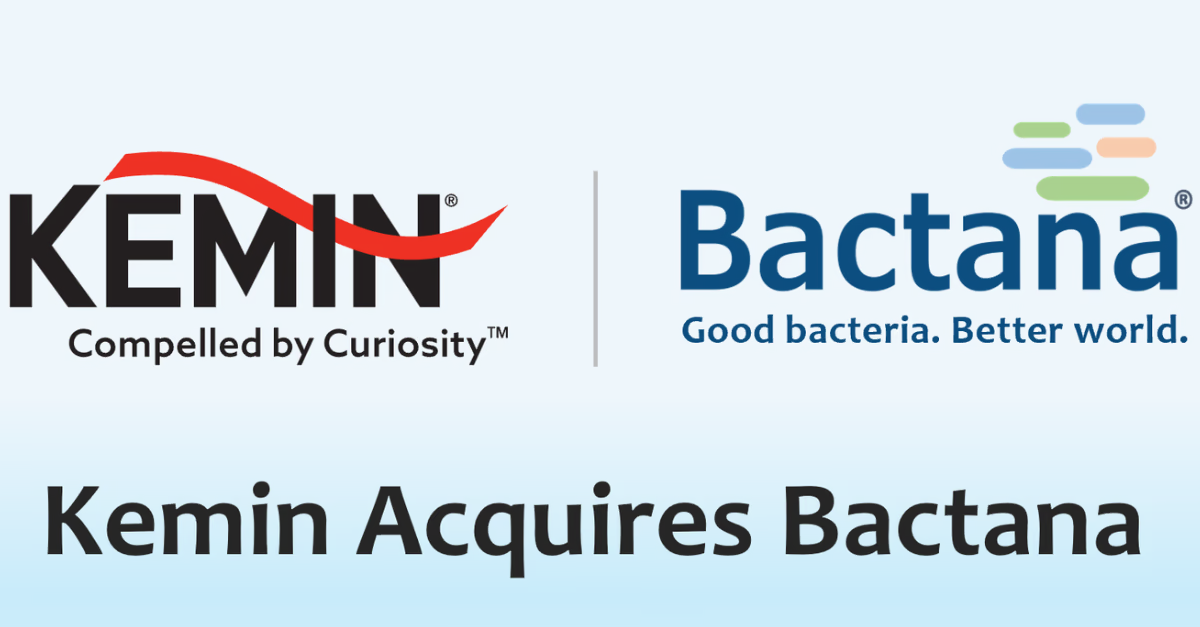 Technology
Technology
2+ MIN
21/05/2025
Kemin Industries Expands Innovation in Intestinal Health with Strategic Acquisition
Bactana was launched from Cornell University's McGovern Center in 2017 and currently operates from UConn's Technology Incubation Program (TIP).
This strategic investment by Kemin Nutrisurance: Pet Food and Rendering Technologies underscores Kemin's commitment to scientific innovation and the continuous expansion of its expertise in gut health.
"Compelled by curiosity, we are reinforcing our dedication to developing novel solutions that support metabolism, immune function, and overall well-being by combining Bactana's cutting-edge research with our existing expertise," said Kimberly Nelson, President of Kemin Nutrisurance. "This acquisition aligns with our long-term vision to explore emerging technologies in intestinal health and further strengthen our position as an industry leader."
As part of this integration, Kemin Nutrisurance will leverage its global resources and scientific expertise to advance research and accelerate the development of innovative solutions in this evolving field. The acquisition represents another step forward in its mission to enhance health and nutrition through pioneering science and technology.
"We are incredibly grateful to our employees, advisors, and shareholders for their support and confidence in our vision over the past six years, and we believe Kemin is the ideal partner to help advance our technology and expand its potential global impact," said John Kallassy, CEO of Bactana Corp.
About Kemin Industries
Kemin Industries (www.kemin.com) is a global ingredient manufacturer that strives to sustainably transform the quality of life every day for 80 percent of the world with its products and services. The company supplies over 500 specialty ingredients for human and animal health and nutrition, pet food, aquaculture, nutraceutical, food technologies, crop technologies, textiles, biofuels, and animal vaccine industries.
For over half a century, Kemin has been dedicated to using applied science to address industry challenges and offer product solutions to customers in more than 120 countries. Kemin provides ingredients to feed a growing population with its commitment to the quality, safety, and efficacy of food, feed, and health-related products.
Established in 1961, Kemin is a privately held, family-owned-and-operated company with more than 3,500 global employees and operations in 90 countries, including manufacturing facilities in Belgium, Brazil, China, Egypt, India, Italy, San Marino, Singapore, South Africa, and the United States.
Media Contact
Meghan Satterstrom, [email protected], +1 515 559 5361
Senior Global Marketing Communications Manager, Kemin Nutrisurance
Source: Kemin Industries
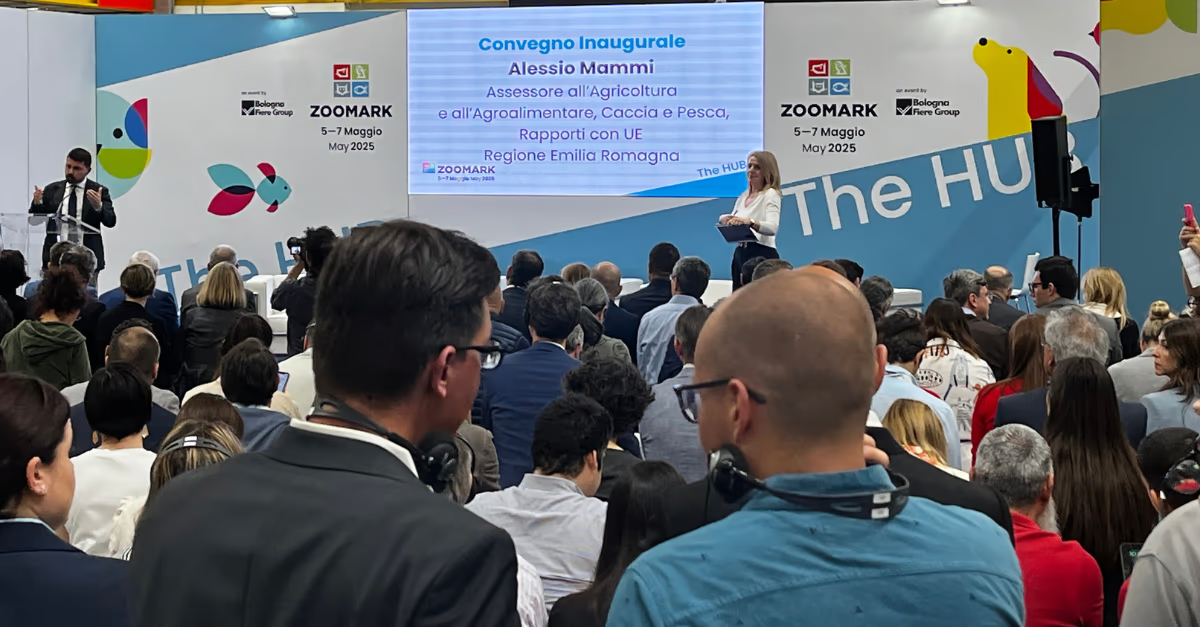 Market Information
Market Information
5+ MIN
20/05/2025
Zoomark 2025: A Vibrant Showcase of Innovation and Global Growth
The 21st edition of Zoomark, the international pet food and pet care trade show, held at BolognaFiere from May 5th to 7th, has just concluded, surpassing all expectations and solidifying the event's leading role in the European pet market.
It's not just the numbers that confirm its success, with an increase in both exhibitors and visitors nearing 31,000, over 64% of whom came from abroad. What truly marked the extraordinary success of Zoomark was the stimulating, engaging, and productive atmosphere over the three days of the fair.
This is evidenced by the fact that many exhibitors have already decided to confirm their participation in the next edition of Zoomark, from May 10 to 12, 2027, through rebooking, benefiting from a preferential rate reserved exclusively for the most prompt companies.
The balance is therefore extremely positive, reaffirming the key role the show plays in supporting both industry and distribution, fostering relationships among operators, and offering professional updates.
Solid Growth, Global Vision
In recent years, Zoomark has grown significantly, but the 2025 edition marked another leap forward, with a 23% increase in exhibitors, leading to a redesign of the exhibition layout, adding 3 more pavilions to accommodate all the companies eager to launch their latest innovations and expand their business.
The exhibitors at Zoomark 2025 numbered 1,268, including 43 startups, occupying 90,000 square meters (+32%compared to 2023), coming from 56 different countries, mainly from Europe but also from the USA, Asia, and the Middle East.
If the data confirms the event's "Bigger and Bolder" nature, it's also thanks to the many initiatives introduced this year: the 3 thematic paths that facilitated the visitation flow, the 6 special areas, and numerous opportunities for meetings, exchanges, and networking.
Thematic Paths
Through a collaboration between Zoomark and the Pet Sustainability Coalition (PSC), Greenmark was created, an itinerary designed to recognise companies showcasing their latest eco-friendly solutions at the show.
The other two special paths made it easier to identify and contact brands that emphasise two very specific fields.
Italian Style highlighted excellence in design, quality, innovation, and creativity, showcasing Italian style in the pet world.
Tech for Future guided visitors to the companies leading in technological innovation, presenting cutting-edge proposals and ideas poised to shape the market's evolution.
The presence of buyers from 120 different countries, many of whom arrived in Bologna thanks to collaborations with ITA - Italian Trade Agency, working in key pet industry markets, confirmed the international appeal of the BolognaFiere event. Among the visitors were a significant number of retailers, pet shop buyers, chain distributors, and import-export operators.
The Success of the 6 Special Areas
For the first time, Zoomark featured the Factory area, attracting purchasing managers, quality managers, formulators, R&D heads, and production technicians interested in visiting companies in the supply chain.
The more discerning buyers and retailers were drawn to the Atelier special area, which offered exclusive, top-quality, and artisanal-style products.
Great success was also seen for the Pawfect! special area, dedicated to the world of grooming, which featured the Pawfect Stage. This stage hosted grooming seminars, shows, the first-ever Dog Massage, and performances from On Hair Dog Edition.
This innovative format, born from a collaboration between Zoomark and Cosmoprof, introduced the most advanced grooming techniques and trends. Live demonstrations were curated by artistic director Vittorio Masciarelli, director of On Hair by Cosmoprof.
The Dog Massage offered a unique training experience, exploring the most advanced dog massage techniques, guided by wellness expert Alessandra Scatà.
Pet Vision reaffirmed its place as the most intriguing special area, the heart of the event, with an exhibition of around 500 new products and a competition that rewarded products best aligned with four macro-trends in the sector: Value for Money, Green Transition, Mini Mania, and Brain & Health.
Among the most interesting and innovative products featured at Zoomark this year were accessories and products focused on sustainability, made from recycled or upcycled materials, like a line of harnesses made from cork; numerous interactive mental activation toys, such as puzzles and developmental mats for pets' well-being; and cutting-edge technological devices, including the first smartphone designed for pets, automatic food and water dispensers connected to pet owners' electronic devices.
As always, Zoomark showcased the best of international pet food production: gently cooked foods (low-temperature cooked to preserve nutritional values), alternative ingredient foods, monoproteins, functional diets, and a wide variety of snacks.
The fair featured not only dogs and cats but also food and accessories for birds, small animals, fish, and exotic pets, which are increasingly present in the homes of pet lovers.
Innovation and Technology at the Forefront
The Aqua Project area, in collaboration with AIPA (Italian Association of Small Animals), was dedicated to aquariums and terrariums, showcasing key innovations in the sector. The Next 5.0 area, entirely focused on pet-tech and innovation, was a major highlight, displaying the most interesting proposals from young startups.
These startups, alongside more established companies, presented their most advanced and diversified solutions in areas such as food, beauty, care, monitoring, IoT, games, and entertainment.
Crucial Presence of the Press
A decisive and crucial factor in the event's success was the presence of over 130 representatives from both Italian and international press. The Zoomark promotional campaign over the past two years has been extensive, reaching and engaging professionals from all five continents: Europe, America, Asia, Africa, and Oceania.
A Full Program of Conferences and Seminars
To make the fair even more engaging and stimulating, a packed program of over 80 conferences, seminars, roundtables, and presentations was organised, helping to facilitate further exchanges, meetings, updates, and training, confirming Zoomark as an essential international event for all key players in the pet market.
Assalco - Zoomark Report
Zoomark is an event held under the patronage of Assalco, the National Association of Companies for the Feeding and Care of Companion Animals, which also presented the Assalco-Zoomark 2025 Report, featuring updated data on the Italian pet food and pet care market, which continues to show dynamic growth in value, despite a challenging economic context.
News and Upcoming Events
The 2025 edition has just concluded with great satisfaction, and attention is already turning to the next one, scheduled for May 10th to 12th, 2027. The success of the event further strengthens Zoomark's international positioning, now recognised as a strategic reference point for the sector.
Confirming this role, Zoomark has officially joined the European Pet Organization (EPO), which brings together key national pet industry associations and aims to be a major player in dialogue with EU institutions.
Internationalisation continues with new projects already underway in China, Thailand, and Turkey. Zoomark's global success and its drive to generate business push BolognaFiere to focus even more on Eastern and non-European markets, forging new partnerships and replicating a successful format for the global pet industry.
Source: Zoomark
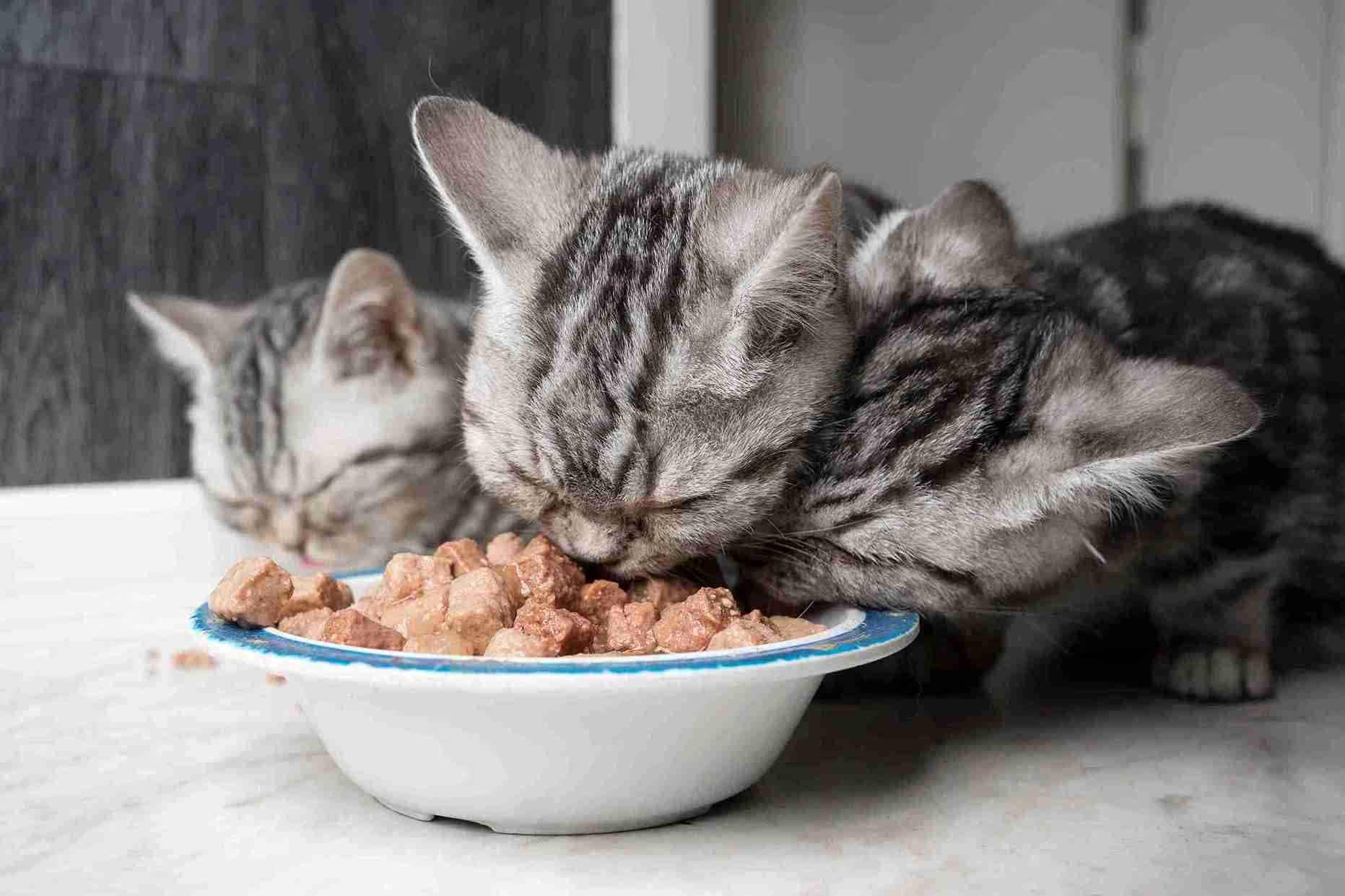 Other microingredients
Other microingredients
1+ MIN
20/05/2025
Technological Benefits of Spray-dried Animal Plasma in Fish-Based Chunks for Canned Pet Food
This study evaluated the use of spray-dried animal plasma (SDAP) as a binder in fish by-product recipes for chunks in gravy. The results demonstrate that SDAP inclusion in recipes significantly improved the consistency (hardness), elasticity (springiness), cohesiveness, chewiness, and juiciness of final wet products.
These improvements were observed in a chunk recipe with a 35% content of mixed salmon and tuna by-products (Experiment 1), and another recipe with chunks having a final content of a 4% salmon by-product (Experiment 2). There was a positive linear effect of increased SDAP inclusion in the recipes for most of the technological parameters measured, such as elasticity, flexibility, juiciness, and hardness.
Our findings indicate that SDAP is an excellent nutritional binder that can enhance the final technological properties of wet pet food products using high-quality fish recipes and, potentially, in recipes containing protein-rich fish by-products with low functionality.
Conclusion
Plasma shows a positive, linear effect on elasticity, flexibility, juiciness, and hardness in fish by-product recipes.
EXPERIMENT 1. PLASMA EFFECT ON FISH CHUNKS
2% of SDAP had a greater impact of increasing hardness and juiciness compared to 2% WG.
EXPERIMENT 2. PLASMA EFFECT ON FISH CHUNKS
Increasing levels of SDAP linearly increased hardness and juiciness of the chunks containing salmon by-products.
By Dr. Joy Campbell -Senior Director of Global Pet Food Technical Services - APC
Source: All Pet Food Magazine
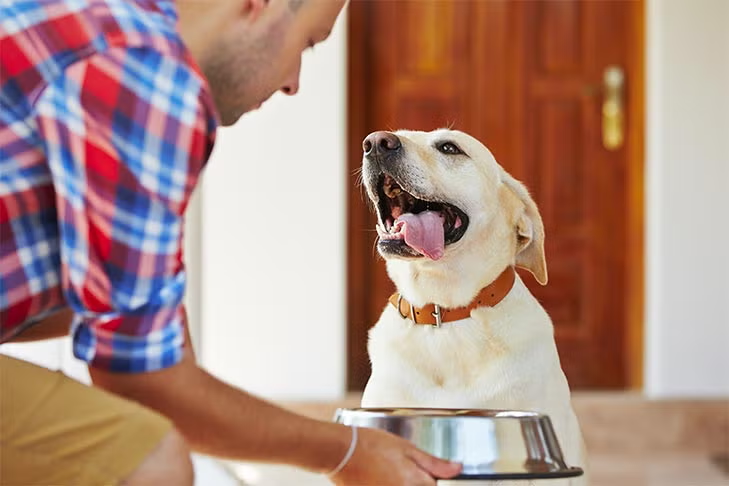 Dogs
Dogs
5+ MIN
16/05/2025
Dog Food Toppers: What Are They and When Should They Be Used?
Toppers generally come in two forms: a wet variety, which resembles watery canned dog food, or a dry variety, which can come as a powder or frozen or dehydrated solid.
While these supplements offer many benefits, it's important to note that they aren't necessary for most dogs. If your dog gets adequate nutrition from a complete and balanced diet that's in accordance with standards set by the Association of American Feed Control Officials (AAFCO), you shouldn't have to add anything to their meals.
Dog Food Toppers Can Serve Multiple Purposes
Dr. Gavin Casper, DVM, the Medical Director of Hometown Animal Hospital in Weston, Florida, notes that dog owners may have many motivations for adding toppers to their pets' food. 'Most owners use toppers because they want to add variety to the dog's diet. However, some owners use toppers to either entice a dog to eat or to fulfill a nutritional profile they feel the main part of the diet is lacking,' he says.
Treats (including dog toppers) should only comprise 10% of your dog's daily caloric intake. An adequate calorie count will depend on your dog's age, size, and whether they're being used for breeding. Overfeeding your dog could increase the likelihood of canine obesity and the medical problems that can come with it.
'Make sure to consult a vet before feeding a topper to ensure it provides the correct nutrition for your pet,' Dr. Casper continues. 'Also, many toppers are only approved as nutritional supplements and should not be fed as the main part of a dog's diet.'
Wet and Dry Dog Food Topper Options
As previously noted, there are generally two variety of dog food toppers. Wet toppers run the spectrum from gravies to sauces to broths. They may also feature small chunks of meat, such as chicken or beef, and veggies, like chopped green beans.
Dry food toppers can come as powders that you dust on top of your dog's kibble. They generally contain chicken or beef stock in a powdered form blended with herbs, like rosemary. Other types of dry dog food toppers come in frozen or dehydrated solid forms, making them easier to hand out as occasional treats.
Regardless of whether you enrich your dog's food with wet or dry supplements, be sure to read the ingredients on the label first. To comply with current health and safety regulations, manufacturers must include a food's ingredients, statement of nutritional adequacy, and caloric content per serving, among other key details that help you make informed decisions as a pet owner.
When reading the label on a dog food topper, keep an eye for any ingredients that also double as allergens for your pet. For example, chicken is one of the most common allergens for dogs. It may also surprise you to know that not every dog food product is safe for every dog, further highlighting the importance of understanding a topper's ingredients.
Do Dog Food Toppers Have Nutritional Benefits?
Since dog food toppers come in many varieties and formulations, the best one for your dog will depend on your motivation for offering it. For example, if you're seeking to enhance your pregnant dog's diet, you may supplement her meals with toppers rich in calcium and folic acid, two nutrients vital to delivering healthy puppies.
'[Dog food toppers can provide] a large variety of proteins, fruits, vegetables, and vitamins/minerals,' Dr. Casper notes. 'Most toppers are not intended to deliver the ingredients a balanced diet would, so they can sometimes provide some added benefit.'
To reduce the risk of overfeeding, take a moment to calculate what constitutes an appropriate daily calorie count for your dog. Then, cross-reference this information with the serving size on the dog food topper's label. This information will help you keep your dog at a healthy weight and promote their well-being.
Benefits of Adding Toppers to Dog Food
Aside from adding some zest to breakfast and dinner, food toppers don't offer much benefit to dogs eating a complete and balanced diet. For reasons like these, Dr. Casper doesn't often recommend these products. However, as with many decisions involving your dog's needs, there is some nuance. For example, Dr. Casper notes that toppers can encourage picky dogs to eat. 'Some dogs do eat more reliably when toppers are added since they tend to be more rich and tastier than the mainstay kibble portion of the diet. There are some toppers that are mostly lightly processed meats with whole fruits and vegetables, which I think can be a wholesome addition,' he explains.
Other benefits of toppers include:
Preventing dehydration, of which pregnant bitches, puppies, and senior dogs are at an elevated risk.
Offering supplements not in a dog's regular diet (such as glucosamine, a chemical that promotes musculoskeletal function).
Serving as a useful tool or reward in positive reinforcement-based training methods.
Under no circumstances should food toppers be used as DIY methods for correcting nutritional deficiencies or addressing chronic medical problems, such as arthritis. Consulting a veterinarian can lend further insight into your dog's health profile and what treatments can help them thrive.
Frequently Asked Questions About Dog Food Toppers
While your dog's veterinarian can answer any specific questions regarding their health, here are some general questions and answers about dog food toppers:
Do toppers benefit dogs with food allergies (such as those allergic to chicken)?
Dr. Casper notes that adding toppers can make identifying and controlling allergies more challenging. 'If the topper is high in omega oils or has a large component of antioxidants, [they] may benefit dogs with environmental allergies,' he notes.
How can owners ensure the safety/quality of commercial food toppers?
Many errors can happen during the manufacturing process that may compromise the integrity of a dog food topper. If you're concerned about the ingredients in a dog food product, Dr. Casper recommends researching whether the company does in-house or third-party testing. '[This ensures] the products listed are confirmed to be in the final product,' he says.
A final question: can you make your own dog food toppers?
Sure. Just be sure to consult a veterinarian first. They can assess your dog's health and explain what constitutes a good recipe, serving size, and feeding regimen.
Source: American Kennel Club
 Sustainability
Sustainability
5+ MIN
14/05/2025
Por Juan Gómez Basauri, Ph.D.
Plastic and Pet Food: Achieving Sustainability
The shift toward sustainability is essential for addressing climate change, preserving biodiversity, and ensuring long-term prosperity for people, pets, and the planet. At the individual and/or consumer level, almost everyone will agree that sustainability means making conscious choices e.g. reducing plastic use, conserving water, supporting ethical brands, and prioritizing energy efficiency.
Plastic has become an integral part of modern life. Its durability, versatility, and cost-effectiveness have made it the packaging material of choice. However, growing concerns about environmental sustainability and plastic pollution lead us to ask if plastic should continue to be the material of choice. As of 2015, approximately 6,300 MT of plastic waste had been generated, around 9% of which was recycled, 12% was incinerated, and 79% was accumulated in landfills. If current production and waste management trends continue, roughly 12,000 MT of plastic waste will be in landfills or the natural environment by 2050 (Geyer et al.; 2017). This article briefly examines plastic usage in the pet food sector, its benefits and challenges, and potential sustainable solutions.
Plastic and its Widespread Usage
Plastics are synthetic polymers derived primarily from petrochemicals. Their lightweight nature, moisture resistance, and flexibility make them indispensable in food packaging, including pet food. The widespread use of plastic in food packaging serves various functions, such as preserving product freshness, preventing contamination, and enhancing convenience for consumers.
Plastic packaging in the pet food sector includes multi-layered bags, resealable pouches, rigid containers, and flexible films. These materials ensure product stability and extended shelf life and provide a barrier against oxygen and humidity. The pet food industry heavily relies on single-use plastics, which, despite their functional advantages, contribute to environmental impact.
Benefits of Plastic Usage in the Pet Food Industry
Extended shelf life: Plastic packaging protects pet food from air, moisture, and light, thereby reducing spoilage and food waste.
Cost-effectiveness: Compared to alternatives such as glass or metal, plastic is lightweight and less expensive to produce and transport.
Convenience: Resealable pouches, tear-resistant bags, and portion-controlled packaging provide convenience to pet owners.
Product safety and quality: Plastic packaging prevents contamination, ensuring that pet food remains safe for consumption.
Branding and marketing: Plastic flexibility allows innovative packaging designs that enhance brand recognition and consumer appeal.
Challenges of Plastic Usage in the Pet Food Industry
Despite its numerous advantages, plastic usage poses significant environmental and sustainability challenges:
Environmental pollution: A large portion of plastic packaging ends up in landfills and oceans, contributing to pollution and harming wildlife.
Non-biodegradability: Most plastics take from 100 to 1,000 years to decompose, creating long-term waste management issues (as cited by Baberemu et al.; 2022).
Microplastics contamination: The degradation of plastic packaging can lead to microplastics entering the ecosystem, potentially affecting animal and human health (UN Environmental Program, 2021).
Recycling challenges: Pet food packaging often consists of multi-layered materials that are difficult to recycle due to the combination of plastics and other substrates.
Dependence on fossil fuels: The production of plastic relies heavily on non-renewable petroleum resources, contributing to carbon emissions and climate change.
Sustainable Alternatives
Many plastic pet food bags and containers are designed for single use, leading to an accumulation of waste that is challenging to manage. Although recycling programs exist, the complexity of pet food packaging materials makes recycling inefficient or impossible in many cases.
Biodegradable and compostable packaging: Materials like polylactic acid (PLA), derived from cornstarch or sugarcane, offer a compostable alternative to traditional plastics (Trivedi et al.; 2023). Other bioplastics made from algae, mushroom mycelium, and seaweed provide innovative solutions (Iyer et al.; 2023; Elkaliny et al.; 2024; Yang et al.; 2021). These materials break down naturally without leaving harmful residues.
Recyclable mono-material packaging: Switching to single-layer recyclable materials, such as high-density polyethylene (HDPE) or polyethylene terephthalate (PET), enhances the recyclability of packaging (Benyathiar et al.; 2022; T. M. Joseph et al.; 2024). Manufacturers can design packaging with easy-to-remove labels and reduce the use of mixed-material films.
Paper-based packaging: Kraft paper and coated paperboard can replace plastic in some pet food packaging applications. Advances in barrier coatings enable paper packaging to maintain freshness and resist moisture.
Reusable packaging and bulk refill systems: Implementing bulk refill stations at pet stores can reduce single-use packaging waste. Encouraging consumers to bring their reusable containers can minimize reliance on disposable packaging.
Edible packaging: Emerging research explores the potential of edible packaging made from natural ingredients like starch, proteins, and seaweed (Patel, 2020). Still, in experimental stages, edible packaging could offer a waste-free solution.
Upcycled and reclaimed plastic packaging: Some companies use recycled ocean plastic or post-consumer plastics to create new products like toys and laptops (North, 2024; Thakkar, 2024), reducing the demand for virgin plastic. However, this is not an easy task and would need the commitment to develop a global network of ocean-bound plastic supply chains.
Industry Initiatives and Future Outlook
Many pet food companies are taking proactive steps toward sustainability. Leading brands are investing in research and development to explore eco-friendly packaging solutions. Companies are also adopting carbon-neutral strategies, reducing plastic usage, and educating consumers about responsible disposal practices.
Collaborations between pet food manufacturers, packaging suppliers, and recycling organizations are essential to improving waste management systems. Consumer demand will continue to drive innovation in sustainable packaging solutions.
Looking ahead, the future of pet food packaging perhaps lies in a circular economy model or where materials are designed for Reuse, Recycling, Repair, Remanufacture, Refurbish, or safe biodegradation, i.e., the 5Rs. Advances in material science, AI-driven waste management, and bio-based packaging will shape the industry's transition toward sustainability.
Final Thoughts
The impact of plastic usage in the pet food industry is a pressing environmental concern. While plastic offers undeniable benefits in food preservation, cost efficiency, and convenience, its sustainability challenges cannot be ignored. Moving toward biodegradable materials, recyclable packaging, and reusable solutions is crucial for reducing plastic waste and fostering sustainability. By embracing innovation and responsible practices, the industry can minimize its environmental footprint while continuing to provide high-quality nutrition for pets worldwide.
By Juan Gómez-Basauri, Ph.D. - Magellan LLC
Source: All Pet Food Magazine
 Nutrition
Nutrition
3+ MIN
13/05/2025
Kerry Brings Sustainable Nutrition, Flavor and Well-Being to the Pet Market in Latin America
São Paulo, May 2025 – Kerry, a global leader in sustainable nutrition, is taking another important step into the Latin American market and is now offering its customers solutions for the pet market, based on its already established and recognized expertise in flavor and human nutrition, combining quality and sensory experience. The Irish multinational will be present with its technologies for the pet industry at Fenagra 2025 – International Agroindustry Fair - Feed & Food (Technology and Processing), between May 13 and 15, in the Anhembi District, in São Paulo.
Kerry's extensive portfolio, combined with the trends of humanization and premiumization in the pet industry, positions Kerry as a partner in innovation. According to research conducted in 2020, 68.6% of pet owners stated that they try to positively impact the environment. At the same time, among those born between the 1980s and early 1990s, 75% are willing to change their consumption habits in order to reduce environmental impact. These factors support Kerry's sustainability strategy.
'These are products that guarantee a diet that meets daily needs, providing improved digestive health, oral care, coat and increased immunity. We are talking about more health, well-being, flavor and sustainability', explains Bruno Pecorino, Kerry's Head of Sales for Latin America.
Pet food producers can access products such as those aimed at proactive health through Kerry innovations to proactive nutrition, boosters to improve the effect of palatability, smoke for feed, flavours, emulsifiers, among others. In the wake of the innovations offered by Kerry, many are specifically aimed at animal health, and the following stand out:
Digestive Health: Plenibiotic (Postbiotic), Everwell Fibre™ (Prebiotic) and two spore forming bacteria (Probiotic), BC30™ and BioBac 40.
Oral Care: Enzyme Blend
Immunity: BC30™ Probiotic , Wellmune for Pets (Saccharomyces cerevisiae betaglucan)
Cognitive Health: Sensoril ® Ashwagandha
Skin & Coat: Eupoly (DHA; EPA fish oil)
'We are currently expanding our distribution network in Brazil and Latin America, focusing mainly on countries such as Mexico, Chile, Argentina, Colombia and Ecuador. Kerry is working to shorten distances and overcome the challenges imposed by regulatory complexity and the differences in rules in each of these countries,' says Pecorino.
Sustainability, one of the pillars that guide Kerry's actions, goes hand in hand with the habits of pet owners. To learn more about the solutions offered by Kerry in Taste and Nutrition, click https://www.kerry.com/markets/animal-applications.
About Kerry
Kerry is a global leader in sustainable nutrition for the food, beverage and pharmaceutical markets, through retail and foodservice channels. We have been transforming and growing in Latin America for 30 years, and we continue to evolve our journey of success. We innovate with our customers to create great-tasting products with enhanced nutrition and functionality, while ensuring a better impact on the planet. Our leading consumer insights, global RD&A team of over 1,100 food scientists and extensive global footprint enable us to solve our customers' complex challenges with differentiated solutions. At Kerry, we are driven to be our customers' most valued partner in creating a world of sustainable nutrition and will reach more than two billion consumers with sustainable nutrition solutions by 2030. To obtain more For information, visit kerry.com.
References
The Future of Pet Care: Global Trends and Opportunities. Euromonitor International. 2021
Euromonitor Lifestyles Survey; 2020; n=26,321
Conference Board Consumer Confidence Survey; 2017
Media contact
Veritas Comunicação
Rodrigo Francischangelis
[email protected]
(19) 99684-4410
Source: Kerry
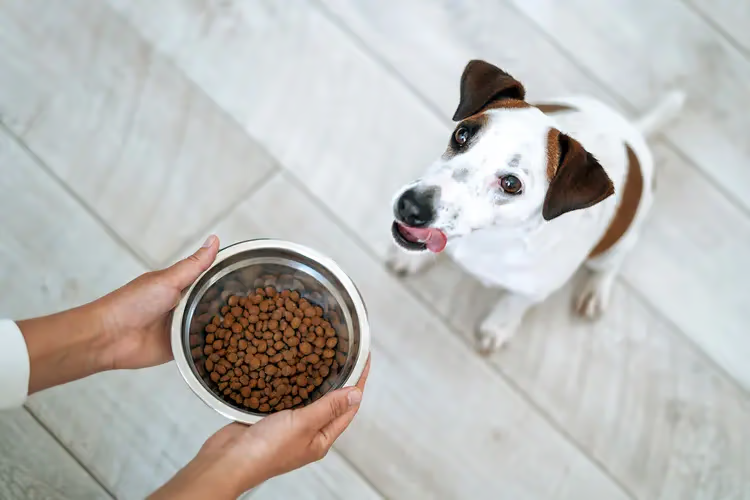 Nutrition
Nutrition
8+ MIN
13/05/2025
Probiotics for Dogs: Foods and Supplements
What Are Probiotics for Dogs?
Probiotics are helpful bacteria that live in the gastrointestinal (GI) tracts of humans and animals. Probiotics for dogs are supplements that contain some of these 'good' bacteria.
Billions of probiotic bacteria are naturally found in your dog's gut. This network of bacteria is called the microbiome. These bacteria work together to help digest food, strengthen the immune system, and make vitamins and other nutrients.
Changes in the microbiome sometimes disrupt the balance between healthy and harmful microbes in your dog's gut. This can cause or contribute to health problems, such as:
Diarrhea
Gas
Cramping
Bloating
Bad breath
Allergies
Obesity
Some of the things that can cause changes in the microbiome include:
Antibiotics
Long-term use of steroids
Infections
Aging
Parasites
Sudden changes in diet
Spoiled food
Emotional stress
If your dog often has digestive problems, talk to your veterinarian about whether a probiotic might help.
What's the difference between prebiotics and probiotics for dogs?
While probiotics are healthy gut bacteria, prebiotics are nondigestible dietary fibers that help feed those bacteria. Some dog foods contain prebiotics, and you can buy prebiotic supplements. They're also found naturally in fruits and vegetables.
If your dog isn't used to prebiotics, they can cause digestive problems at first. Ask your vet about whether prebiotics could benefit your dog.
Types of Probiotics in Dogs
You can give probiotics to your dog in many different forms:
Yogurt or kefir: Yogurt and kefir with active cultures contain probiotics. But they may not be the best probiotics for your pet. These products might not contain the particular strains of bacteria that can benefit dogs. Further, the lactose (milk sugar) found in dairy products can cause digestive issues. And some types of yogurt and kefir contain artificial sweeteners, which can be dangerous for dogs. There's little, if any, scientific evidence that human probiotic foods, such as yogurt, can benefit pets.
Dog foods with probiotics: Some dog foods are fortified with probiotics. But bacteria are sensitive to temperature, air, and moisture. It's not clear whether the probiotics in dog food stay alive long enough to be effective.
Probiotic treats: Some probiotics for dogs are made in the form of soft, chewy treats. They're an easy way to give your dog probiotics, but they're not all of equal quality. Some treats don't contain live probiotics and might have lots of preservatives or other additives.
Pills: Probiotic supplements are available in capsules that you can give your dog directly, put in their food, or hide in a treat like peanut butter.
Powders and liquids: You just add these probiotic supplements to your dog's food.
Pastes. These come with a syringe that you use to put the supplement directly into their mouth. You may also mix the paste with their food.
What Are the Best Probiotics for Dogs?
The best probiotics for dogs contain strains that commonly live in dogs' intestines, such as:
Bifidobacterium animalis (strain AHC7), which can help with diarrhea,
Bifidobacterium bifidum,
Bacillus coagulans,
Bifidobacterium longum (BL999), which may help with anxiety,
Enterococcus faecium (strain SF68),
Lactobacillus acidophilus, which can help with the quality and frequency of poop,
Lactobacillus casei,
Lactobacillus plantarum,
Lactobacillus rhamnosus (strain LGG), which helps humans with diarrhea and might do the same for dogs.
Not all probiotic foods and supplements will have the exact strains your dog needs. Check the label of any product you buy for a list of specific probiotics, a use-by date, and an analysis of how many live bacteria it will contain by the end of its shelf life. Your vet can help you find a good-quality product that will work for your dog.
To keep the good bacteria alive, avoid exposing these products to moisture, air, or extreme temperatures. Some are sold in sealed individual serving packets to protect them.
Benefits of Probiotics for Dogs
Probiotics increase the good bacteria that aid your dog's digestion. This can help with gastrointestinal issues, such as:
Diarrhea
Gas
Inflammatory bowel disease
There's also some evidence they may help with:
Obesity
Bad breath
Anxiety
Allergies
Immune system disorders
Skin problems
Urinary tract infections
While there have been many studies on using probiotics in humans, there's not much research on how probiotics affect dogs. Dogs have many types of bacteria in their gut, but much of the research has only looked at single types of bacteria rather than several types and how they work together. This means we don't fully know how probiotics in dogs work.
Do probiotics firm up dogs' poop?
Several studies have shown that probiotics can benefit dogs with diarrhea, including those that have loose stools due to antibiotic treatments or endurance exercise. Some research has found probiotics to be as effective as antibiotics for shelter dogs with diarrhea.
Talk to your vet if your dog tends to get stress diarrhea when going to vet appointments, boarding, or traveling. They may suggest giving your dog probiotics ahead of time.
Will a probiotic help my dog with itching?
There's some evidence that probiotics for dogs could help with skin disorders and allergies that could cause itching. But we need more research to say for sure.
Before Giving Your Dog Probiotics
Before giving your dog a probiotic, here are some things to think about:
Your dog's health is an indicator
If your dog is healthy, they may not need a probiotic. A vet will usually prescribe a probiotic if there's a problem with your dog's gut or digestion. This is usually caused by illness or stress.
Diet plays a big role
Research shows that dogs who eat a diet high in carbohydrates may not have healthy microbiomes. Changing your dog's food and adding more protein could help. Your vet can help you find the right food for your dog.
Probiotics are sensitive to temperature, air, and moisture
Probiotics are living things. Exposure to air, temperature, and moisture extremes for long periods can kill the microbes and make a probiotic product useless. They may need to be kept in the fridge.
Check the use-by date
This tells you how long the bacteria are guaranteed to be alive and useful. Probiotics used after the expiration date probably won't work as well.
Be careful with human foods
If you decide to give your dog kefir or yogurt with live cultures, read the labels carefully. They may contain artificial sweeteners or preservatives that aren't safe for dogs. Only feed your dog plain yogurt or kefir without sweeteners.
Dogs can also be allergic to dairy or lactose intolerant, which can cause diarrhea and an upset stomach. If your dog has trouble digesting dairy, coconut kefir might work better for them. This is a nondairy fermented milk that contains probiotics. Small amounts of coconut are safe for dogs, but make sure to use coconut milk kefir and not coconut water kefir. Coconut water is high in potassium and isn't safe for dogs.
Find a method that works for you
Treats with added probiotics might be the easiest way to give your dog probiotics. They also come in pill form, but some dogs won't take pills even if they're hidden in treats. Try adding probiotic powder to your dog's food if this is an issue.
There's limited research
There's some research on probiotics for dogs, but much of the evidence is anecdotal from pet owners or veterinarians. We need more studies to better understand how probiotics help dogs. Your vet can help you find the best option.
Probiotics for Dogs FAQs
Can I give my dog human probiotics?
Yogurt and kefir with live cultures are probiotics that you can give to your dog. But before you do, read the label carefully. These foods may contain artificial sweeteners that are dangerous for dogs. Only feed your dog plain, unsweetened yogurt or kefir.
Some dogs also have trouble digesting dairy, which can cause diarrhea and upset stomach. You could try coconut kefir, a nondairy product that contains probiotic. But make sure you use coconut milk kefir, not coconut water kefir. Coconut water isn't safe for dogs due to its high level of potassium.
2. Is Yakult good for dogs?
Yakult is a type of fermented dairy drink from Japan that contains probiotics. It's made for humans, but some people also give it to their dogs. As with any human food product, read the label carefully before feeding it to your pet to make sure it doesn't contain the sweetener Xylitol (also called wood sugar, birch sugar, or birch bark extract). This sweetener is dangerous for dogs.
If your dog has issues digesting dairy, Yakult may cause an upset stomach and/or diarrhea. Too much of any sweetener — even those such as sugar, stevia, and aspartame, which are generally safe for dogs — can do the same. It's best to check with your vet before giving Yakult to your dog.
3. Is pumpkin a probiotic for dogs?
Pumpkin is not a probiotic, but it may help dogs with diarrhea. It's high in fiber, which absorbs water and helps bulk up your dog's poop. Pumpkin also contains prebiotics, a type of fiber that feeds probiotic bacteria.
4. Is it OK to give my dog probiotics every day?
Daily use of probiotics is safe for most dogs. But if your dog has a weakened immune system, give them probiotics only under the supervision of a vet.
5. How long does it take for probiotics to start working on a dog?
How long it takes to see an effect from probiotics depends on your dog and what you're treating them for. It might take a few days to a few weeks. Probiotics might not be effective for some dogs or certain health problems. If you're giving your dog probiotics to avoid stress diarrhea bought on by travel or boarding, you might start giving them probiotics a few days ahead of time.
By Amy Flowers
Source: FETCH by WebMD
 Market Information
Market Information
2+ MIN
09/05/2025
CIPEU launches the registration!
On October 1 and 2, we will meet again in Zaragoza!
A space created to bring together those who are part of this evolving industry.
For two days, you will have access to conferences with international experts and a big exhibition hall, specially aimed at professional networking with leading supplying companies in the industry.
Everything in one place —an integral experience designed to build connections and long-lasting relationships.
If you are part of the pet food industry, CIPEU is for you, and you can save your place!
The registration is online through the official website: www.cipeu.es
It is a single ticket that includes 2 days of conferences, an exhibition hall, the coffee break, and lunch. Save your place today and use the early bird for the launch!
In this new edition, we focus on offering relevant and updated content, guided by international experts leading the industry.
Training is one of our differentiating points. More than an event is a learning and professional updating space designed to offer strategic, technical knowledge, hand in hand with those setting the standard in the sector.
The conference program in 2025 is organized around three big topics:
Trends and developments: Raw materials in pet food.
Influence and upgrades: Pet food manufacturing process.
Nutrition and health: Nutraceuticals in pet food.
These conferences are to train and inspire those seeking to go beyond tradition and grow with a global, updated outlook.
We enthusiastically thank you global companies that participated as exhibitors and sponsors in CIPEU 2025. Their presence and contribution allow us to organize a quality event, with valuable content and an accurate atmosphere for industry growth.
Do you want to take part? The last sponsorship opportunities are available! Contact us and find out how to be an active part of this experience.
Source: CIPEU
 Automation
Automation
2+ MIN
09/05/2025
Resources and Options for Feed Companies Seeking to Optimize Processes
It is worth mentioning the options available in the market that can be interesting for companies in general.
Dumper (Intake of Raw Materials)
It is more common to use dumpers, especially in new companies, since this resource is considered when planning the execution project aiming to facilitate the unloading of bulk materials and reduce the number of employees in the raw materials intake.
There are different dumpers in the market. It is crucial to evaluate the model that fits your company's needs, considering the truck receiving the dumper, the density, and raw material fluidity, among other factors.
The intake hopper must have the same volume as the truck. Otherwise, it will produce product congestion, and the unloading process must wait for the hopper to empty.
Automatic Boilers
Many feed mills use wood or wood chip boilers to generate the steam needed to power mills of pellets, extruders, and dryers. Boilers usually need one employee per shift to power the energy and monitor its functioning.
However, automated fueling systems (commonly for wood chip boilers) already exist and require a machine operator to monitor but not to assist the process.
Micro and Macronutrient Dosing System
Most feed mills now have a macronutrient automated dosing system, which means raw materials with more inclusion volume in formulas.
On the other hand, dosing is still manual in the inclusion process of micro-ingredients (vitamins and minerals, or premix).
The automatization of this process has two main advantages: 1) reduces the labor need, since manual weighing needs at least one or two operators; 2) reduces the error percentage in the formulation (in the manual process, operators can make mistakes when dosing the amount of vitamins). If this happens, it will directly affect food efficacy, and the animal consuming it will not have appropriate nutrition and may show different zootechnical indicators than expected.
Bagging and Palletizing Automated Systems
Feed bagging and palletizing systems require more labor than others. There are some options to automate these processes, but many factors must be considered, e.g., package size; capacity of bags per minute/hour in each package (bagging systems often have lower capacity per hour when dealing with smaller volume packages); the type of bag, some of them are only for plastic packaging while others work with paper and raffia; pallet size, automated palletizing systems size according to pallet's measure; the ability of suppliers to provide technical assistance and spare parts, etc.
If the factors that affect the equipment size are analyzed and the hiring, installing, and maintenance procedures are well done, automation can generate high profits. It eliminates the requirement for four employees per shift (two in the bagging line and two in the palletizing). Besides, it drastically reduces mistakes, such as irregular bagging sealing and wrong distribution of bags.
By Ferraz
Source: All Pet Food Magazine
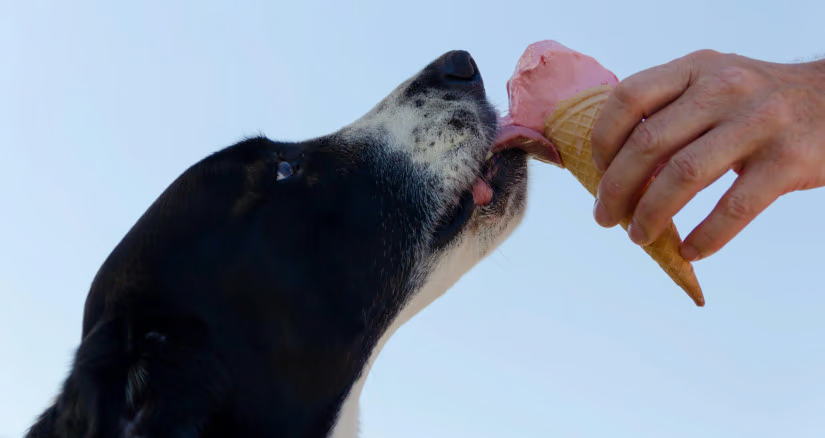 Nutrition
Nutrition
6+ MIN
09/05/2025
Homemade Isnt a Hall Pass: The Case for Smarter Pet Nutrition
The study found that healthy adult dogs fed a homemade diet modeled after the typical 'Western' human diet experienced significant gut imbalances, inflammation, and metabolic disruptions, all without gaining a single pound.
Researchers examined the effects of a Western-style diet high in saturated fats and refined carbohydrates and low in fiber on ten clinically healthy, lean adult beagles. The researchers designed the diet to mimic common dietary patterns found in humans living in developed countries. Over three months, the dogs were first fed a high-fiber diet, then switched to a Western-style diet, and finally returned to their original, high-fiber diet. The results were striking. Despite maintaining ideal body weight and condition scores, the dogs exhibited signs of gut inflammation, unhealthy changes in gut bacteria, increased cell stress, and issues with how their bodies processed and digested their food.
Healthy Looking Doesn't Always Mean Healthy Eating
These outcomes highlight two essential truths: health is not just about what's visible on the outside, and homemade does not inherently mean healthy. Internal dysfunction can exist even in pets that appear perfectly healthy.
This isn't the first study to demonstrate how misleading appearances can be. In earlier research, homemade diets were evaluated for their nutritional adequacy and found to be lacking in one or more essential nutrients in nearly every instance. Common deficiencies included calcium, zinc, iron, and B vitamins, all of which are necessary for long-term health, but are often overlooked when owners prepare meals based on personal preference or online recipes.
The assumption that 'fresh' equals 'better' often leads well-meaning owners to prepare meals for their pets at home. The popularity of home-cooked and raw diets has soared in recent years, driven by concerns over commercial pet food recalls and a desire for greater control over ingredients. However, nutritionists caution that homemade diets, when not professionally formulated, are frequently nutritionally imbalanced. Even recipes published in books or recommended by breeders commonly lack adequate levels of critical nutrients like calcium and vitamin D.
How Diet Alone Can Disrupt a Dog's Gut and Health
What makes this recent study particularly eye-opening is that it didn't just look at what was in the dogs' food; it also measured how their bodies responded to it.
Dogs fed a Western-style diet showed clear signs of inflammation throughout their bodies. Their blood contained higher levels of markers associated with inflammation and cell stress, and their gut tissues showed signs of irritation and damage at the cellular level. These changes occurred even though the dogs were lean and appeared perfectly healthy on the outside. However, when they were transitioned back to the original high-fiber diet, many of those negative effects began to reverse. This indicated that the diet, not weight gain or illness, was responsible for the inflammation and gut issues.
The gut is often referred to as the body's 'second brain,' and in this study, it played a significant role. When the dogs were fed the Western-style diet, the balance of bacteria in their digestive systems changed in unhealthy ways. There was an increase in bacteria associated with inflammation and digestive issues, along with a decrease in beneficial bacteria that help maintain the gut lining and produce essential nutrients. These changes in gut bacteria closely resemble what scientists observe in humans who consume a high-fat, low-fiber diet. It's another indication that diet quality can rapidly affect gut health, even in dogs, and that what we feed them is just as important as it is for us.
One of the major differences between the two diets in the study was their fiber content, and it turns out that this made a major impact. Fiber is a key ingredient when it comes to gut health. It nourishes the beneficial bacteria in the digestive tract, which produce helpful compounds that reduce inflammation and promote a healthy gut lining. However, many homemade diets, particularly those that mimic high-protein, low-carb human trends, often lack sufficient fiber. One study found that even recipes created by veterinarians frequently did not include the appropriate types of fiber. The recent Western diet study further supported this, revealing that dogs on the low-fiber Western diet had more unhealthy bacteria in their digestive tracts and experienced negative changes in how their bodies processed and digested the food they were consuming.
Another important finding from the study was how the diet impacted the dogs' bile acids (natural chemicals that help break down fat). Normally, bile acids are carefully regulated by the gut and its microbes. However, in dogs consuming the Western-style diet, levels of a particular type known as cholic acid significantly increased. Excessive amounts of this acid can irritate the gut lining. This imbalance, known as bile acid dysmetabolism, has been linked to gut inflammation in dogs and humans. Observing this condition in otherwise healthy dogs solely due to diet underscores how quickly poor nutrition can disrupt essential systems in the body.
Do As I Say, Not As I Do
Ultimately, the findings from this study urge us to reconsider how we define 'healthy' when it comes to pet nutrition. Lean body condition is important, yes, but it is not enough. If the diet fueling that lean body is rich in saturated fats and low in fiber and micronutrients, it may be quietly laying the groundwork for future disease. And if the dog's gut is inflamed, its immune system compromised, or its microbial balance disrupted, then we are failing our pets, even if they look 'fine.'
This study challenges the conventional wisdom that a dog's outward appearance is a sufficient measure of health. Many owners assume that as long as their dog maintains a healthy weight, all is well. This research, however, shows that diet composition—not just calorie count—can greatly impact internal health, even in dogs that seem outwardly healthy. It also reinforces the limitations of do-it-yourself nutrition. Homemade diets are only as good as their formulation. Without careful nutrient analysis and professional guidance, they risk being incomplete, imbalanced, and biologically harmful over time.
Of course, this does not mean that all homemade diets are bad. When properly formulated, home-prepared meals can be an excellent choice for pets with specific needs or owners who wish for more control over the ingredients. The key lies in precision, not guesswork. Creating balanced recipes requires nutritional software, ingredient databases, and a deep understanding of species-specific needs—resources that are not commonly available to the average pet owner.
Why Leading Fresh Food Brands Rely on BSM Partners
That's where we come in. In today's pet food landscape, where fresh, homemade-style diets are in high demand, nutritional precision is not just a bonus; it's a necessity. At BSM Partners, we bridge the gap between great ideas and scientifically sound execution. Our team of veterinary nutritionists, formulators, and microbiome experts work hand in hand with fresh food brands to ensure every recipe is not only complete-and-balanced, but also designed to support long-term wellness. We go far beyond basic nutrient targets; we create diets that align with how a pet's body actually responds to food.
Whether entering the market or refining an existing product, partnering with BSM Partners ensures that your brand benefits from rigorous science, regulatory expertise, and a deep understanding of how ingredients interact with biology. In a space where consumer trust hinges on real results, BSM Partners is not just a partner—we are your competitive edge.
About the Author
Neeley Bowden is a Manager of Special Services on the BSM Partners Product Innovation team. She earned her bachelor's degree in pet food production and her master's in food science. In her early career, she worked in product innovation of pet food ingredients, focusing on the development of palatability enhancers. Bowden calls her horse farm in South Carolina home, along with her faithful canine, Allie.
By Neeley Bowden
Source: BSM Parnters
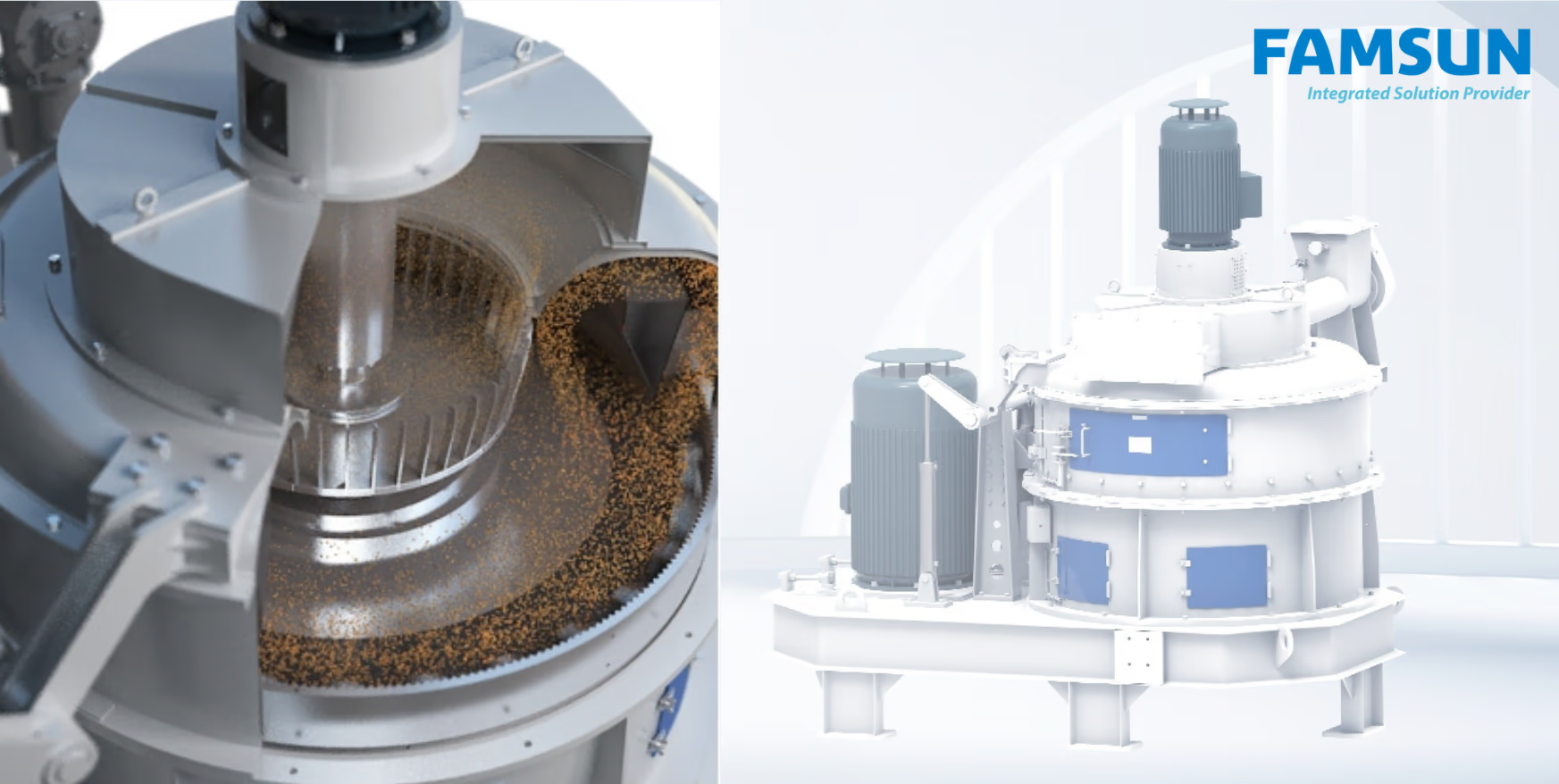 Grinding
Grinding
4+ MIN
07/05/2025
What is Pulverization? Definition & Applications
From animal feed to construction materials, controlling particle size ensures quality, efficiency, and performance. This fundamental process makes modern manufacturing possible, affecting everything from your morning coffee to life-saving medicines.
So, what does pulverized mean? What are the applications? Read this article to explore how this unsung hero shapes the world, one particle at a time!
What is Pulverization?
Pulverization is the process of breaking down solid materials into fine particles to enhance their usability in various industries, where ingredients need to be processed into fine powders for better mixing and digestibility.
There are three primary types of pulverization:
Crushing: The initial stage of size reduction, where solid materials reduce their size through mechanical forces such as compression impact and shear. Processing of minerals grains and dried plant materials makes frequent use of this method.
Grinding: A secondary reduction process that refines crushed materials into smaller, more uniform particles. Grinding is essential in industries requiring consistent particle sizes, such as cement production, pharmaceuticals, and animal feed manufacturing.
Milling: A finer grinding process that produces ultra-fine powders, often used in applications demanding high precision, such as nanomaterials, specialty chemicals, and high-performance food additives.
What Are the Applications of Pulverization?
Pulverization serves as a cornerstone technology across diverse industries:
Food & Feed Industry
In modern feed production, advanced pulverization techniques transform raw agricultural materials like corn, soybean meal, and wheat bran into highly digestible powders.
This particle size reduction is crucial for several reasons: it dramatically improves nutrient absorption in livestock and poultry, enhances feed conversion ratios (reducing overall production costs), and allows for uniform mixing of vitamins and supplements.
The aquaculture industry particularly benefits from precisely pulverizing, as fish and shrimp require optimally sized particles for efficient consumption. Recent advancements even enable customized particle size distributions tailored to specific animal species and growth stages.
In food manufacturing, pulverization creates the foundation for countless products. The manufacturing process of wheat depends on controlled pulverization methods for flour preparation, while sugar grinding produces confectionery items, and spice processing produces uniform flavor profiles. The technology also enables the production of instant food products through micronization, improving solubility and texture.
Pharmaceutical Industry
Pharmaceutical companies need exceptional accuracy control for their pulverization operations. Correct tablet manufacturing demands specific particle size control so the material can successfully get compressed and dissolve appropriately.
Inhalable medications depend on micron-scale powders for effective pulmonary delivery. Biotech applications use nano-pulverization to enhance drug bioavailability and create targeted delivery systems.
Chemical & Material Processing
Chemical and material processing industries utilize pulverization for catalyst production, polymer processing, and composite material manufacturing. Uniform particle sizes ensure predictable reaction kinetics and material properties. In construction, pulverized limestone and other minerals form the basis of cement, while the mining sector relies on ore pulverization for efficient mineral extraction.
Construction & Mining
Pulverization is widely applied in processing raw minerals, cement, and construction materials. Crushed and ground limestone, gypsum, and other aggregates are used in cement production and infrastructure development.
Recycling & Waste Management
Emerging applications in recycling and waste management demonstrate pulverization's environmental value. Modern shredding technology inputs construction waste, electronic garbage, and plastic waste to recover reusable components. Pulverization turns agricultural waste into functional organic amendments for soil while generating usable biofuel raw materials from it.
From ensuring livestock nutrition to enabling precision medicine and sustainable material cycles, pulverization technologies continue to evolve, addressing global challenges in food security, healthcare, and environmental sustainability.
FAMSUN's SWFL Series Pulverizer
As industries increasingly demand precision, efficiency, and adaptability in material processing, innovative pulverizer designs have become pivotal to meeting these challenges. At the forefront of this evolution is FAMSUN's SWFL Series Pulverizer Machines. Key advantages include:
Multi-Industry Versatility: Designed for ultra-fine aquafeed grinding (100-250μm), this pulverizer also excels in pharmaceuticals, chemicals, food, and new energy materials, adapting to diverse industrial demands.
High-Efficiency Grinding: Innovative serrated hammer blades and wave-like toothed rings maximize shearing force, while optimized airflow systems and rotor structures reduce energy waste. Automatic airflow adjustment ensures stable, high-yield performance.
Precision Particle Control: Achieve exact fineness (100-250μm) via VFD-controlled grading impellers. Adjust linear speed and airflow paths to meet specific product requirements.
User-Centric Design: Modular wear-resistant components (segmented toothed rings, stream-splitting covers) enable quick replacement, minimizing downtime.
Safety & Reliability: G2.5 dynamic balance certification ensures vibration-free operation. Integrated sensors monitor temperature, sparks, and vibrations, triggering alerts for proactive safety management.
FAMSUN empowers industries to achieve finer, more uniform particle sizes by continuously optimizing pulverization technology. Visit our website now to find out more pulverizer machine solutions or speak to our experts to see which one is best for you!
Source: FAMSUM
 Formulation
Formulation
4+ MIN
05/05/2025
Feeding Pets Like Family Means Formulating Like a Scientist
Most people likely imagine the formulation of pet food to be as easy as making dinner—throwing your chicken in an oil-coated pan, putting the rice on the stove, and perhaps some broccoli (good choice, by the way) in the oven. However, the science of how nutrients are absorbed, how they impact the genes (no, not jeans) in your body, and subsequently, how they affect your health, are probably not top of mind. Not to mention, like baby formula, pet food has to be complete and balanced, as it is usually the only source of nutrition our pets get.
This means that all of the essential nutrients (amino acids, fatty acids, vitamins, and minerals) are provided. Much like a painting, this is actually just the canvas, the bare bones of health and understanding. And as it turns out, formulating—at least for me—is a work of art; not as generic as making a diet that is 'complete-and-balanced,'or a supplement with just anything in it. I try to create masterpieces that not only stand the test of time, but pull from the extensive, very nerdy scientific background to which I spent years dedicating my life. Let's talk about that scientific quest and dedication to knowledge.
The Science Behind My Expertise
When I do the math, it turns out that after my four-year college degree, I spent another two years learning about nutrients, absorption mechanisms, and biological functions (to name a few). Then I spent an additional four years researching everything I could about the impact of nutrients on cell structure, bioavailability, gene expression, absorption, blood parameters, nutrient integrations, ionomics, cell cytotoxicity, nutritional biochemistry, growth, signaling, and metabolic pathways, as well as teaching diet formulation. Oh, and lest I forget, how to code for statistics with the statistic majors. Yawn. We are now at 10 years of school, six of which were exclusively focused on studying nutrition. That is longer than law school, vet school, and many other advanced degrees.
Sometimes I think one must have an affection for pain to get a PhD, since so much of life is missed out on, but that is a topic for a different day. Sometimes the quest for figuring out mechanisms is so great that PhDs will dive deeper into seriously advanced topics and go for their post-doctoral work, which is at least another year. Since I couldn't help but refine my skills by helping to develop a protocol to isolate immune cells out of fat, we can add another year: that makes 11.
My goal is to highlight the years dedicated solely to nutrition, the deep and scientifically rigorous program in which a PhD nutritionist has been trained and practiced. The understanding of nutrients, metabolism and formulation is an all-consuming endeavor for the serious nutritionist. Animal diets demand a comprehensive, specialized, and nuanced understanding of how a diet affects health at a biochemical and physiological level.
What Does This Really Mean?
Not all pet food and supplements are created equal. Many products on the market are developed with minimal scientific backing, relying on outdated formulations or unverified claims. My extensive background ensures that every formulation I create is grounded in evidence-based science, incorporating the latest advancements in animal nutrition. This means:
Deeper Specialization and Precise Formulation: My education is entirely focused on nutrition, so ingredients are carefully selected for proven benefits, with a 3D understanding of potential interaction and implications within the body.
Evidence-Based Formulation: I develop pet food and supplements based on carefully vetted, cutting-edge nutritional science.
Balanced Nutrition: Formulations are designed to be more thoughtful than just 'meeting AAFCO standards' or other targets. I take all the ingredients at hand and think about how they work together. Not all casseroles are the same.
Advanced Research Skills: Staying ahead of emerging trends and always improving formulations are paramount. Extensive research experience inclines me toward critical evaluation of new science that can be applied to product formulation.
Precision and Innovation: I leverage the latest discoveries in nutritional biochemistry to craft optimal diets for pets, ensuring superior bioavailability and nutritional integrity.
A Commitment to Better Pet Health
As you consider your pet food or supplement options, I would recommend looking for one formulated by PhD nutritionists. If they are anything like myself, they are crazy enough to spend an additional seven years of post-graduate education on their craft, and therefore are wholly dedicated to it.
After all, pets are more than just animals—they're family. Their health and well-being should never be left to marketers and accountants. When you choose a product formulated by BSM Partners, you're choosing a team committed to excellence and, above all, passionate about science.
About the Author
Dr. Blaire Aldridge is the Vice President of Nutrition Services at BSM Partners. Throughout her career, Dr. Aldridge has been one of the industry's primary innovators in companion animal nutrition, leading teams at Nestle Purina to groundbreaking products and solutions. She is also an experienced innovator for equine nutrition. Dr. Aldridge received her master's degree and PhD in monogastric nutrition at Purdue University, and conducted post-doctoral work in human nutrition at Washington University Medical School.
By Blaire Alridge
Source: BSM Partners
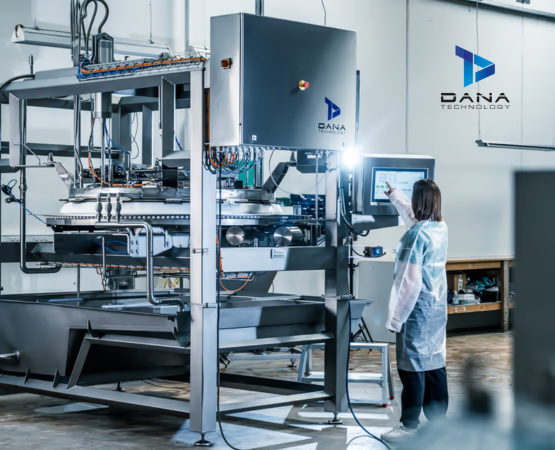 Cooling
Cooling
3+ MIN
02/05/2025
Revolutionizing Pet Food Production with Texturization Technology: Turning By-Products into Meat-Like Chunks
But how can manufacturers turn these underutilized by-products into something pets find desirable and, at the same time, is great for business? At DANA Technology ApS, we believe an advanced texturization process answers those questions.
Through mechanical rotation and heating, texturization technology turns emulsified meats into fibrous chunks that mimic real meat's appearance, feel, and taste—maximizing the value of by-products or lower-value ingredients.
From By-Products to Premium Products
One of the most significant opportunities for pet food manufacturers is repurposing what would traditionally be waste or ingredients used in low-end products—such as machine-separated meat from the bone, poultry and fish trimmings, and prime cut-offs to mention a few.
Instead of being used for low-value applications such flour, oil or biogas production, these materials can, compared to traditional chunks, now be turned into high-quality textured protein using a Rotary Disc Texturizer (RDT) from DANA Technology ApS, a Denmark-based company focused on pet food machinery.
The RDT leverages mechanical rotation and thermal energy to coagulate proteins and carbohydrates, creating a meat-like texture that delivers real meat's bite, chew, and elasticity. The result is a product that maintains the natural appearance pets and their owners find appealing, making it an ideal solution for premium pet food.
Texturization relies on the rapid denaturation and coagulation of proteins within the emulsion. As the RDT applies heat and constant movement, proteins undergo structural changes that, depending on the protein type, occur between 50 and 70°C. This precise process creates a fibrous, meat-like texture, allowing denatured proteins to aggregate and form solid chunks.
Making Pet Food Production Sustainable
The RDT offers a practical solution for repurposing by-products and supports sustainability by reducing manufacturers' reliance on prime cuts typically used for human consumption. This shift contributes to a more resource-efficient food production system and allows pet food manufacturers to enhance their competitive advantages in a tough market.
Vagn Hansen, CEO of DANA Technology ApS, explains: 'Our RDT allows manufacturers to transform by-products into high-quality products that meet the growing demand for sustainability and profitability in the pet food industry—and it is a way to increase profit from day one.'
As the pet food industry evolves, the RDT is leading the charge, providing manufacturers with a powerful solution to meet market demands for sustainability, quality, and profitability.
Meet us at Zoomark 2025
This year, we're excited to attend Zoomark 2025, the international exhibition for the pet food industry. If you're attending, we would love to meet you, discuss your production goals, and explore how DANA's solutions can make a difference to your production facilities.
You'll find us in Hall 26, Booth C88, where we'll showcase the DANA Steam tunnel and the DANA RDT—two technologies helping pet food manufacturers create high-quality wet food and premium chunks with an appealing and crunchy texture.
If you're exploring ways to improve your production or want to exchange ideas about the future of pet food, let's connect in Bologna. See you there.
Contact
Pedro Fossat
Head of Sales
[email protected]
+45 44 12 70 43
Source: DANA Technology
 Market Information
Market Information
3+ MIN
30/04/2025
Exclusive Interview: Inside Zoomark 2025 — Innovation, Growth and Global Connections in the Pet Industry
What are the main objectives for this new edition of Zoomark?
Zoomark 2025 aims to be a driving force for the pet industry, promoting networking, business development, and innovation on a global scale. The main goal is to support the growth of the pet business by bringing together professionals from all over the world in a dynamic setting designed around the visitor experience.
With over 1,300 exhibitors from 56 different countries and thousands of product launches and previews, the show serves as both a commercial platform and a hub for professional training, market insight, and strategic exchange — especially critical in today's complex economic context.
What new features or innovations stand out at this year's trade show?
Zoomark 2025 stands out for its record-breaking scale and fresh new offerings. This year introduces several standout innovations, including three thematic visitor paths — Italian Style, Greenmark, and Tech for Future — to streamline exploration across 90,000 sqm and 10 exhibition halls.
There are also six themed special areas:
Factory explores innovation and sustainability in the supply chain
https://www.zoomark.it/en/discover/special-areas/factory/13807.html
Next 5.0 features the most promising startups and pet tech
Pet Vision highlights cutting-edge trends with newly launched products and services
Atelier celebrates premium excellence in pet fashion, beauty, and gourmet food
Aqua Project focuses on aquariums, terrariums, and hi-tech solutions for aquatic animals and reptiles
Pawfect! is the go-to area for groomers, with training, shows, and creative displays
Additionally, four new live stages have been added to host a range of seminars, live demos, and masterclasses on key industry topics:
The HUB (Hall 19) will host institutional conferences, brand presentations, and seminars
Innovation Corner (Hall 16 – Next 5.0 Area) will be the heart of innovation, featuring the Pet Vision Awards and forward-thinking presentations
Factory Stage (Hall 28) will address supply chain challenges with a focus on sustainability and process innovation
Pawfect Stage (Hall 25) will be a show within the show, dedicated to grooming with performances, advanced techniques, and animal wellness
What business sectors and attendee profiles are you expecting?
Zoomark brings together a diverse and international audience from every segment of the pet industry: manufacturers, retailers, distributors, startups, and service providers specializing in pet food, pet care, tech, fashion, grooming, and aquatics. The event is also a draw for grooming professionals, veterinarians, buyers, and innovators, as well as media partners and thought leaders. With a 23% increase in exhibitors compared to 2023, the 2025 edition reflects the strong international demand for in-person B2B interactions.
How do you see the global pet food market evolving, and what role does Zoomark play in this?
Despite global economic challenges such as inflation and rising energy costs, the pet food sector remains resilient, buoyed by the emotional and social centrality of pets in households. Consumers continue to invest in premium nutrition and wellness. Zoomark plays a vital role as a trend accelerator and market barometer, showcasing innovations such as gently cooked foods, functional diets, and alternative ingredients. The global pet food market is evolving rapidly, with growing demand for premium, sustainable, and health-focused products, alongside increased interest in innovation and digitalization.
Zoomark plays a key role by serving as a platform for showcasing market trends, fostering international dialogue, and connecting stakeholders from all parts of the supply chain through events like the Assalco-Zoomark Report and the Pet Vision and NEXT Awards.
What message would you like to share with first-time Zoomark participants?
To first-time participants: Zoomark 2025 is more than a trade show — it's a gateway to the future of the pet industry.
Whether you're a buyer, purchasing manager, quality manager, formulator, R&D manager and production engineer don't miss out Factory Area as a strategic opportunity to meet companies looking for your valuable professionalism!
At Zoomark you'll find tailored content, groundbreaking innovations, and countless opportunities to connect.
Make the most of the tools available, especially the official app, to plan your visit, explore every corner of the event, and take full advantage of the business, educational, and social opportunities. And don't miss the Zoomark Party on May 5th — the perfect way to network and unwind in a relaxed, fun atmosphere! Buy your ticket and join us: https://festazoomark.befair.eu/en/
Source: All Pet Food
 Interviews
Interviews
5+ MIN
29/04/2025
The Interview: Jorge Guzmán, Sales Director at Bühler
Jorge, could you tell us about your professional background and the focus of your current role as Sales Director at Bühler?
My journey at Bühler began in 2000, 25 years ago, as a Project Engineer. Ten years later, I took on the role of Sales Manager for several Bühler divisions after spending three years training at the company's headquarters in Switzerland. Starting in 2010, I became Sales Director for the Animal and Human Nutrition Division for Mexico and Central America. I am a Mechanical Engineer with various training courses in processes at our headquarters in human and animal nutrition. I graduated from the SFT (Swiss Institute of Feed Technology), and I hold a degree in Business Management from IPADE and EGADE Monterrey.
Our main focus is to position ourselves as market leaders by offering the service and technological support customers expect to achieve their strategic plans, which are increasingly demanding and competitive.
What is the scope of Bühler technologies, and how do they optimize the lives and processes of those who use them?
As a global leader in technology development for the food and mobility industries, Bühler is present in the daily lives of millions of people, from the moment they wake up to when they go to bed, helping them meet their basic needs. Our technologies are present in their smartphones, solar panels, banknotes, lipsticks, the food they eat, and the vehicles they drive. We strive to innovate for a better world with a special focus on healthy, safe, and sustainable solutions.
How do your products and solutions contribute to the pet food industry?
The pet food industry is so fundamental that Bühler has integrated it under the Human Consumption Division. This ensures that, with our advanced technologies and automation, our customers obtain precise traceability and control of the entire extrusion process, both single and twin shafts. The result is a reliable, high-nutritional-value, healthy, and easily digestible food for pets.
Do you currently have any pet food projects in development or soon to be launched you can share with us?
Bühler is a company that invests up to 5% of its turnover in new technologies each year, and the Pet Division is no exception. Some of these developments are already underway in projects such as:
Kibble humidity measurement and control at the dryer exit, as it is crucial because this is where you can make or lose money. That's why Bühler launched our "DryingPro," which helps measure and control humidity in real-time to increase drying process performance and profitability.
Kibble production ingredient mix accuracy and precision: This is optimized with various weighing equipment at different points in the process, from the extruder inlet to before packaging, thereby reducing waste within the process.
The particle size spectrum after milling, which is vitally important for achieving good mix homogeneity, as well as for the texture and cooking of the ingredients during the extrusion process. To achieve this, Bühler has a technology that controls this particle size, achieving improved kibble quality in every sense.
What are the distinguishing features of your Granulex model and its applications?
Our Granulex Series 5 hammer mill can provide energy savings capacity increases of up to 10% and time savings of up to 50% when changing hammers and screens. It also features an explosion-proof design to improve production safety.
The Granulex Series 5 mill is used by demanding industries that require grinding raw materials from very coarse to fine for feed or grains, such as the pet food industry, malt and beer, and general pre-milling.
And what can you tell us about the Imdher-Bühler alliance? How do you think it benefits the industry?
It is a strategic plan that has revolutionized the pet and feed industry, offering turnkey projects from a single supplier, primarily for Mexico. We have managed to integrate the experience of Imdher, a 100% Mexican company with more than 40 years in the market, with that of Bühler, with more than 170 years of creating cutting-edge technology for a better world.
Speaking of the market, how do you see the pet food industry in Mexico and Central America? At what stage do you think it is now?
Mexico, one of the largest markets in the world after the United States and Brazil, is gradually becoming saturated with a measured growth of approximately 4% annually, after growing at a rate of over 12% for the last 10 years. Differentiation will begin with high-quality products, as basic products will face intense competition, and a price war will start. This is where cutting-edge technology will play an important role in receiving byproducts from other industries and replacing some raw materials that will be expensive or difficult to obtain.
The rest of Central America is a smaller but rapidly growing market, which should be taken advantage of by local manufacturers or large Mexican producers who can export kibble while maintaining tariffs the Central American market faces on products from outside these countries.
In your view and experience, where is the pet food industry heading, technologically speaking? How do you think artificial intelligence is impacting it?
The pet food market is becoming more humanized due to the close relationship between pets and humans. Therefore, the way pet food is produced must be stricter and comply with certain regulations that, currently, are not applied or considered. Technology will play a very important role every day, together with raw materials, which are increasingly difficult to process. This is where twin-shaft extruders and more efficient packaging systems must be considered given their broad production flexibility.
AI is already present in production processes, healthcare, and disease prevention. Regarding food production, AI is becoming increasingly necessary through automation. It can fix process errors, allowing machines to adjust themselves to improve efficiency, performance, and traceability, and control human error, not to mention that manpower in Mexico and Central America is increasingly scarce. Today, we must consider new production plans and the integration of our new generations so that they adapt to each market's needs.
What place does sustainability have in the company's vision? How do Bühler's innovative solutions face climate change?
For Bühler, sustainability is essential for our regulatory framework, balancing humanity, nature, and the economy and involving our own company, suppliers, and customers. Regarding nature (the environment), we created a plan that began five years ago in which we committed to reducing waste, water, and energy use in our customers' value chain by 50% by 2025. Additionally, we have developed a path to achieve a 60% reduction in greenhouse gas emissions across all our operations by 2030.
Thank you, Jorge, for sharing your knowledge and Bühler updates with the All Pet Food community!
By Jorge Guzmán
Source: All Pet Food Magazine
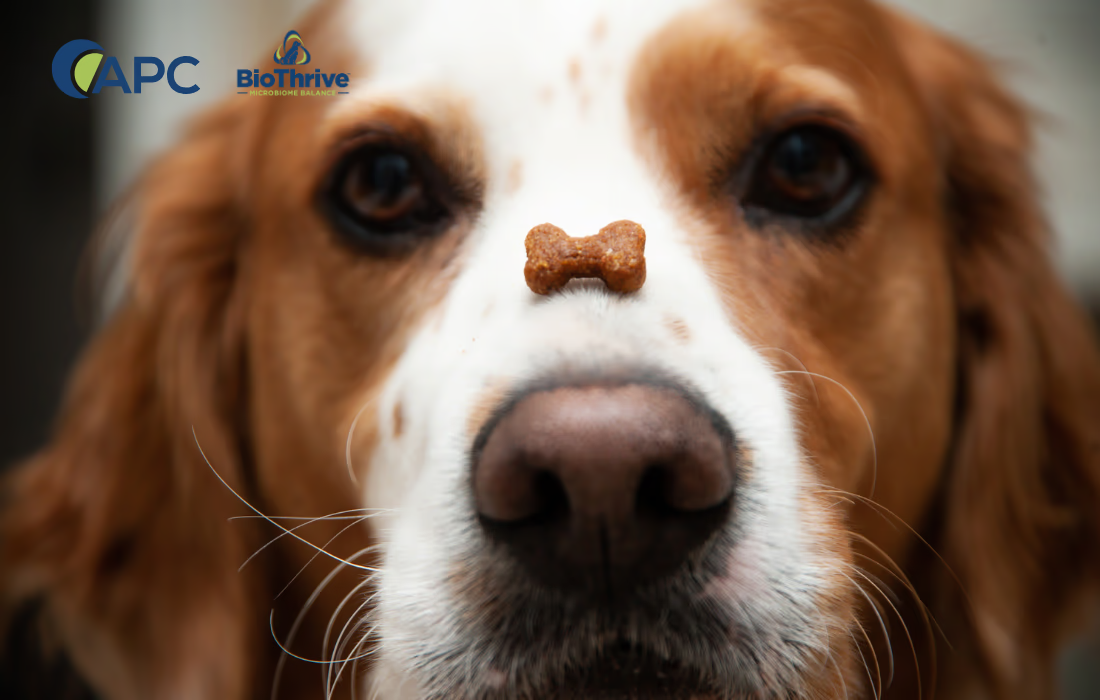 Other microingredients
Other microingredients
3+ MIN
29/04/2025
APC Launches BioThrive Microbiome Balance in Europe – A Premium Solution to Support Pets' Gut Health in Dry Kibble, Treats, and Supplements
This pioneering solution, available exclusively for the European market, combines a unique blend of APC's prebiotic plasma-based functional proteins and a specialized probiotic and to deliver comprehensive microbiome support. BioThrive® Microbiome Balance supports overall well-being in pets—while delivering key advantages for manufacturers, such as heat resistance during coating processing, extended shelf life, enhanced palatability and a claim-ready functionality backed by science—ensuring the probiotic remains active in the final product.
'The health of a pet's gut plays a critical role in their overall well-being,' states Dr. Joy Campbell, Sr. Director Global Pet Food Technical Service, APC. 'With BioThrive® Microbiome Balance, we are addressing this need by offering a functional ingredient that not only supports immune health but also ensures probiotic efficacy in the final product—delivering visible improvements in pets' digestive health and overall quality of life.'
Visible Health Benefits of BioThrive® Microbiome Balance for Pets:
1. Strengthens the Gut Barrier: Supports normal intestinal function and immune health by maintaining a balanced microbiome.
2. Stabilizes Beneficial Gut Bacteria: Helps improve digestion and nutrient absorption, promoting optimal gastrointestinal function
3. Improves stool consistency and reduces fecal odor
4. Enhances Skin and Coat Health: Contributes to healthier skin and a shiny coat
Why Choose BioThrive® Microbiome Balance?
1. Heat-resistant: Retains probiotic activity post-processing in the coating phase
2. Enhanced palatability: Increases food acceptance in dogs
3. Shelf-stable solution for dry kibble, treats and supplements: Long-term stability in the finished product
4. Claim-ready: Backed by science, BioThrive® Microbiome Balance supports substantiated marketing claims on gut health and digestibility, thanks to multiple studies that validate its efficacy.
APC's commitment to innovation and quality drives the development of products like BioThrive® Microbiome Balance, providing the pet industry with trusted solutions to enhance their pet recipes. Made with sustainably sourced plasma functional proteins, BioThrive® Microbiome Balance offers a natural and environmentally responsible way to support pet nutrition. Whether addressing specific gut health challenges or supporting overall wellness, BioThrive® Microbiome Balance is the ideal choice for maintaining a happy, healthy pet.
For more information about BioThrive® Microbiome Balance or to request samples, please contact APC at https://apcpet.com/contact or call Gloria Mohedano at +34 93 861 5060 or [email protected]
To read more about BioThrive® Microbiome Balance, visit our website: https://apcpet.com/biothrive-microbiome-balance
# # #
For more information contact:
Gloria Mohedano, Marketing Coordinator Europe
APC Europe
[email protected]
About APC:
APC is a global leader in the manufacture and sales of blood-derived functional plasma proteins and red blood cell products, impacting billions of animals and plants each year. Founded in 1981, APC's pioneering research into plasma-derived proteins has resulted in over 600 published journal articles and more than a dozen patents. With 500+ employees and 17 manufacturing facilities across eight countries, APC remains committed to supporting animal health and manufacturing efficiency. Focused on sustainability, APC develops high-performance, environmentally friendly solutions to improve animal health, reduce environmental impact, and create a more sustainable future for the global supply chain.
www.APCpet.co
Source: APC
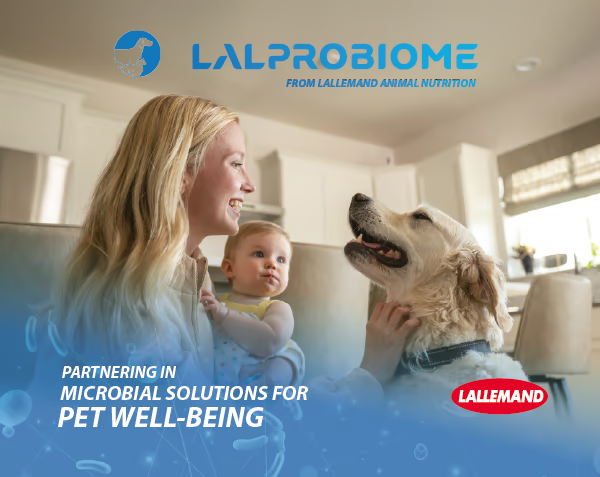 Preservatives
Preservatives
2+ MIN
28/04/2025
Support Companion Animal Health & Your Brands with Premium LALPROBIOME Solution
Why choose LALPROBIOME? In today's pet food and supplement market, health-conscious consumers want more than just basic nutrition for their furry family members—pet parents seek scientifically backed, high-performance solutions that can help their pets leading longer, happier and healthier lives. That's where LALPROBIOME's cutting-edge microbial and antioxidative solutions can offer your products a competitive advantage. LALPROBIOME from LALLEMAND ANIMAL NUTRITION is backed by the LALLEMAND group's 160+ years of experience using fermentation to produce yeast and bacteria, global production facilities, and research-driven innovation. Our expertise can help you find the right microbial strain for the right application. We fully control our production process from the lab to packing to ensure the optimal efficacy of our yeast and bacteria based solutions. LALPROBIOME solutions can elevate and differentiate your brands with novel ingredients promoting unique and specific benefits in four categories: Postbiotic yeast Postbiotic bacteria Probiotic yeast & bacteria Antioxidative solutions LALPROBIOME's research strengths focus on three vital areas of nutritional support. Used alone or in combination, our solutions can help promote and maintain health for dogs and cats by: Optimizing the microbiota balance to aid digestion and strengthen gut barrier integrity. Reinforcing immune response using solutions with well-recognized and specific immunodulatory properties. Protecting against free radicals by helping better cope with oxidative stress. A Way to Lead in a Competitive Market Market research shows that people are improving their companion animals' environments, diets and medical care in an effort to increase longevity and well-being. Just as they are prioritizing their own health and nutrition, they want high-quality, functional and natural ingredients in the pet food, treats, and supplements they serve their companions. LALPROBIOME microbial and antioxidative solutions match consumers' current and future priorities by offering benefits for digestive care, immune support, and antioxidant and nutritional optimization—including skin, coat, and oral care—which makes them a must-have for dog and cat pet food manufacturers. Including LALPROBIOME solutions in your brands' formulations offers the market advantages of years of science-backed innovation, consistent quality, processing compatibility and customer support that is a leader in companion animal nutrition. Shaping the Future of Companion Animal Nutrition LALLEMAND ANIMAL NUTRITION's dedicated companion animals platform, LALPROBIOME, is working to help maintain companion animal nutrition and well-being with selected microbial and antioxidative solutions. As pet owners become more discerning, pet food, treat, and supplement manufacturers must stay ahead with cutting-edge, research-backed LALPROBIOME probiotics, postbiotics, and antioxidative solutions. At LALLEMAND, we're with you every step of the way, from selecting the right functional ingredient for your formulation, to ensuring efficacy through manufacturing and packaging, to addressing market trends. By partnering with LALLEMAND, you're enhancing your product line and contributing to the health and well-being of animals. Position your brands for future success—partner with LALLEMAND today. Source: Lallemand
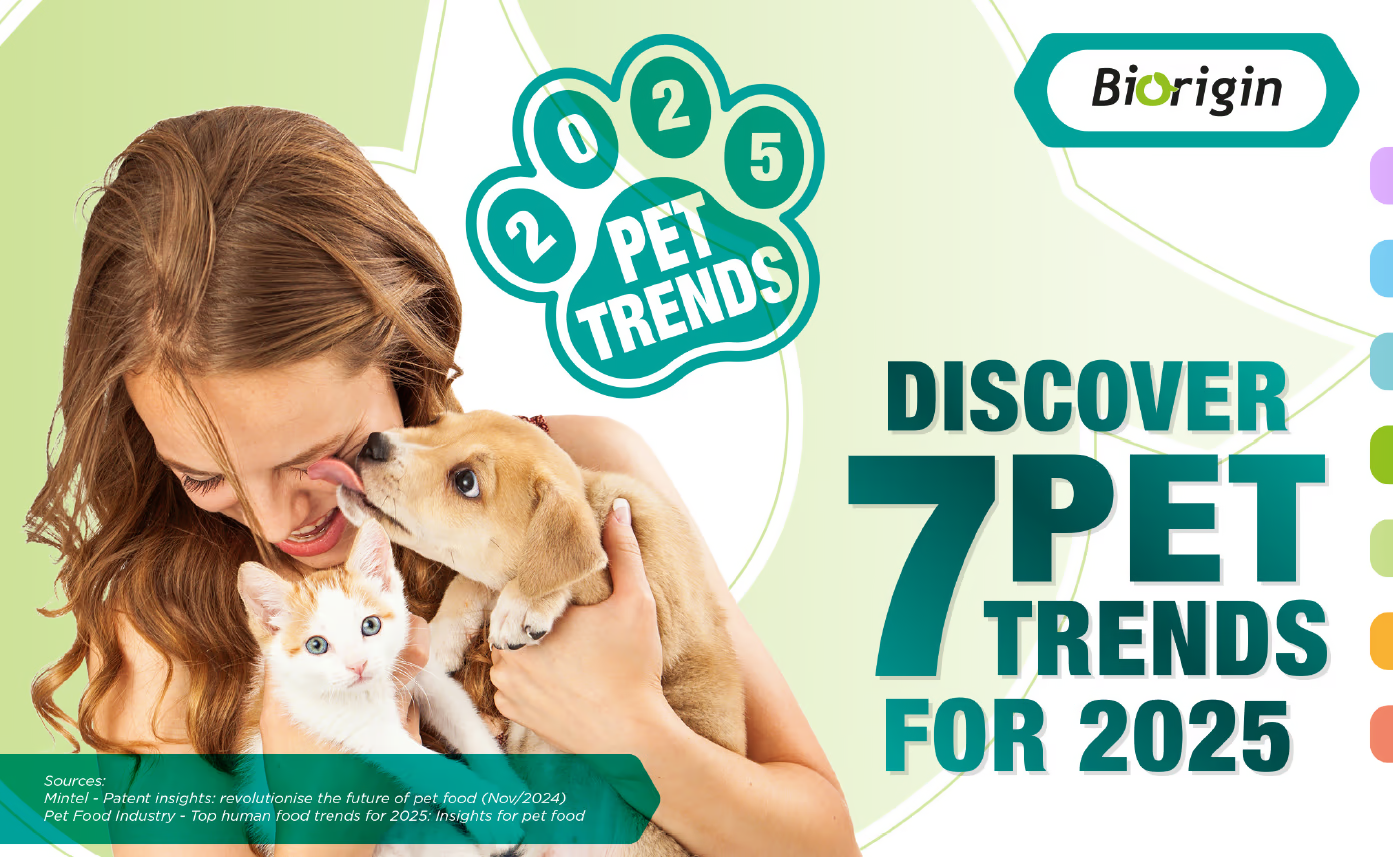 Palatants
Palatants
7+ MIN
28/04/2025
7 Trends For Pet Food In 2025
DISCOVER THE MAIN PET MARKET TRENDS FOR 2025!
Attentive to the pet market's needs and pet owners' expectations, we highlight the 7 trends that will shape 2025!
We invited our experts to analyze each one and highlighted our solutions, products, and content that aligned with these demands, adding even more value to our clients' products.
Sources:
Mintel - Patent insights: revolutionise the future of pet food (Nov/2024)
Pet Food Industry - Top human food trends for 2025: Insights for pet food
FOCUS ON INGREDIENT QUALITY
Price, freshness, health benefits, nutritional content, shelf life, and safety.
The industry is expected to explore technologies that improve nutritional quality and reduce production costs for pet food.
With the growing humanization of pets and the strengthening of the bond between animals and their families, who increasingly welcome them into their homes, the quality of the ingredients in pet products becomes essential. This not only ensures the consistency of the items but also prevents recalls and ensures the best nutrition and health for pets.
'Pet owners are increasingly paying attention to the quality of ingredients in animal nutrition. With this in mind, Biorigin goes beyond developing innovative products: it offers high-quality, naturally derived ingredients derived from Saccharomyces cerevisiae yeast. With full control over the production process and complete traceability, we ensure maximum reliability at every stage. Our highly qualified technical team is driven by the mission of promoting animal health and well-being, reflecting this commitment to constant investments in research and innovation to deliver the best solutions to the market.'
EDUARDO YAMASHITA, Global Feed Product Manager at Biorigin.
PERSONALIZED HEALTH AND NUTRITION
Search for foods tailored to the needs of each pet, with specific diets approved by veterinarians that improve health and well-being.
Health benefits include increased satiety, better digestion, and weight control.
Pet owners are increasingly seeking a diet for their dogs and cats that is similar to their own, reflecting a more significant concern with the quality of the nutrients consumed. They want products that meet the various needs of their animals, such as fur care, strengthening the immune system, improving metabolism, and using clean labels and sustainable ingredients. In this context, Biorigin products stand out, offering solutions suitable for all stages of the lives of dogs and cats.
'Biotechnology, applied to producing yeast-derived products for pet nutrition, brings countless benefits, combining personalization, high nutritional quality, and sustainability. Biorigin solutions are developed with a focus on the health and well-being of pets, offering complete support to owners who seek the best care for their companions. With benefits such as support for natural defenses, intestinal health, improved palatability, and a rich source of proteins, our products support health through nutrition so that pets live happier and healthier lives.'
ROBSON BARDUCCI, Animal Nutrition and Health Specialist III at Biorigin R&D Center
DOWNLOAD THE E-BOOK! - Discover 5 reasons to choose MacroGard!
SUSTAINABILITY
Consumers are increasingly aware that climate change can impact the prices of various products
Biorigin ensures full traceability of its ingredients, as the raw material used, sugarcane, is produced by Zilor, our parent company. This guarantees quality at every stage of the production process, from the source to the final product. Furthermore, Zilor has signed the UN Global Compact, an initiative that brings together companies committed to sustainable development and transparency in their actions, and Biorigin has also made this commitment.
"Biorigin's emissions reflect a positive path about climate change. While there is still a long way to go in combating climate change and transitioning to renewable energy, at Biorigin, we are advanced in this area, with over 90% of our energy coming from renewable sources."
WALTER JOSÉ SARNO SANTOS, Environmental Coordinator at Biorigin
WORTH READING! - Check out the article on Biorigin's blog.
RECYCLED INGREDIENTS TO REDUCE WASTE
Transforming waste from the food industry into sustainable ingredients for pet food reduces the sector's environmental impact and carbon footprint.
Environmental concerns are essential, including those related to pet nutrition. The industry can contribute by upcycling ingredients, reusing food that would otherwise be discarded, and reducing waste and environmental exploitation. The extrusion process efficiently produces dry or semi-moist food, transforming raw ingredients into high-quality products with varied shapes, textures, and nutrients.
"The pet industry can transform waste from the food industry into nutritious and safe ingredients for pets. Biorigin's yeast-derived products are the best example of this, as some come from the food industry and the sugar cane industry, which have several benefits for animal health and are safe and fully traceable."
LETÍCIA PACHECO, Research and Development Specialists at Biorigin
WORTH READING! - Check out the article on Biorigin's blog
PLANT-BASED FOODS
37% of pet owners in Thailand want a more sustainable diet, such as plant-based options.
The vegan market is expanding, both for humans and pets. More than a lifestyle choice, this trend is gaining strength in the face of a growing concern: the scarcity of animal protein, driven by the increase in the global population and climate change. This issue also affects the growing pet population, challenging the industry to develop attractive formulations, considering that dogs and cats have a greater acceptance of proteins of animal origin. Between 2021 and 2024, according to Mintel, 216 vegan and vegetarian products were launched in the pet market, highlighting the growth potential of this niche. In this context, Biorigin yeast is an ideal alternative, adding appeal and flavor to pet food and meeting the demands of this growing segment.
"Biorigin's ingredients are of natural origin, vegan, and highly safe, meeting the growing demands of the pet food market. With increasingly discerning consumers, our solutions offer quality and safety aligned with global sustainability trends. Our ingredients, developed to guarantee health, flavor, and functionality, are ideal to meet the expectations of owners who seek the best for their companions."
ANDERSON APARECIDO DIAS SANTOS, Specialist I in Research and Development at Biorigin
ORAL CARE, SKIN AND COAT
Other concerns for pet owners include oral care for dogs and cat foods that prioritize skin and coat benefits.
Although essential, brushing your pet's teeth can be a challenge for their owners. Therefore, foods that help with oral hygiene represent an excellent opportunity for the market, helping to prevent bad breath and oral diseases. Taking care of the health of the skin and fur is crucial for the well-being of animals and for minimizing allergens, microorganisms, and parasites that can affect both pets and humans. Furthermore, this care is essential to ensure our four-legged companions' quality of life and longevity.
MacroGard, a source of purified beta-glucans from the yeast S. cerevisiae, strengthens natural defenses, maintaining your pet's health and making it stronger, more resistant, and ready to face the challenges of a longer life.
WORTH READING! - Check out the article on Biorigin's blog.
DOWNLOAD THE E-BOOK! - Discover how MacroGard helps you achieve healthier skin and coat.
INTESTINAL HEALTH
Digestive health is one of dog and cat owners' main concerns and priorities.
The intestine is one of the most critical and extensive organs in the body of dogs and cats and is essential for their overall health. It is responsible for the digestion and absorption of nutrients and houses a significant part of the immune system. In addition, it plays an essential role in regulating pets' moods and improving their quality of life. Another relevant aspect is the coexistence that animals have with their owners, making it necessary to ensure the quality of the feces of pets. This reflects intestinal health and directly impacts the well-being and daily coexistence between animals and their owners.
THE BETTER THE INTESTINE, THE BETTER THE MOOD! - HyperGen, Biorigin's 2nd generation prebiotic, is derived from the primary fermentation of the yeast S. cerevisiae. It contributes to a balanced intestinal environment, optimizing nutrient absorption and strengthening the intestine's natural defenses.
DOWNLOAD THE E-BOOK! - Discover how HyperGen helps with intestinal health.
PREBIOTICS: IT ALL STARTS IN THE INTESTINE - ActiveMOS is rich in mannan oligosaccharides (MOS) that function as substrates for the microbiota and promote more production of short-chain fatty acids, essential for maintaining intestinal health.
Discover how ActiveMOS helps with intestinal health.
INSIGHTS THAT MATTER
'The pet market is increasingly focused on trends such as sustainability, specific oral and coat health care, personalized nutrition, and high-quality ingredients. At Biorigin, we are proud to have offered solutions that have met these demands for over 20 years, always combining innovation, animal welfare, and environmental respect. With a focus on ingredients of natural origin, our company stands out for its technical quality and strong research performance, ensuring reliable products with full traceability and alignment with the expectations of an increasingly demanding and constantly evolving market.'
THAILA CRISTINA PUTAROV, Global Business Manager of Animal Nutrition and Health at Biorigin
'At Biorigin, the satisfaction of our customers is our highest priority. That is why we develop products and solutions that meet the diverse needs of the pet market. Our commitment goes beyond offering innovation and safety: we deliver results that add value to our partners and delight demanding owners, providing the best for their pets.'
ROBSON BARDUCCI, Animal Nutrition and Health Specialist III at Biorigin R&D
VISIT OUR WEBSITE AND FOLLOW US ON LINKEDIN:
https://www.linkedin.com/showcase/biorigin-animal-health-and-nutrition/
https://www.linkedin.com/company/biorigin-zilor/
Contact our technical-commercial team for more details about the product.
Send an email to [email protected]
*Regulations may vary by country. Always consult local laws and requirements for product use and its claims. This product is not intended to diagnose, treat, cure, or prevent any disease.
Source: Biorigin
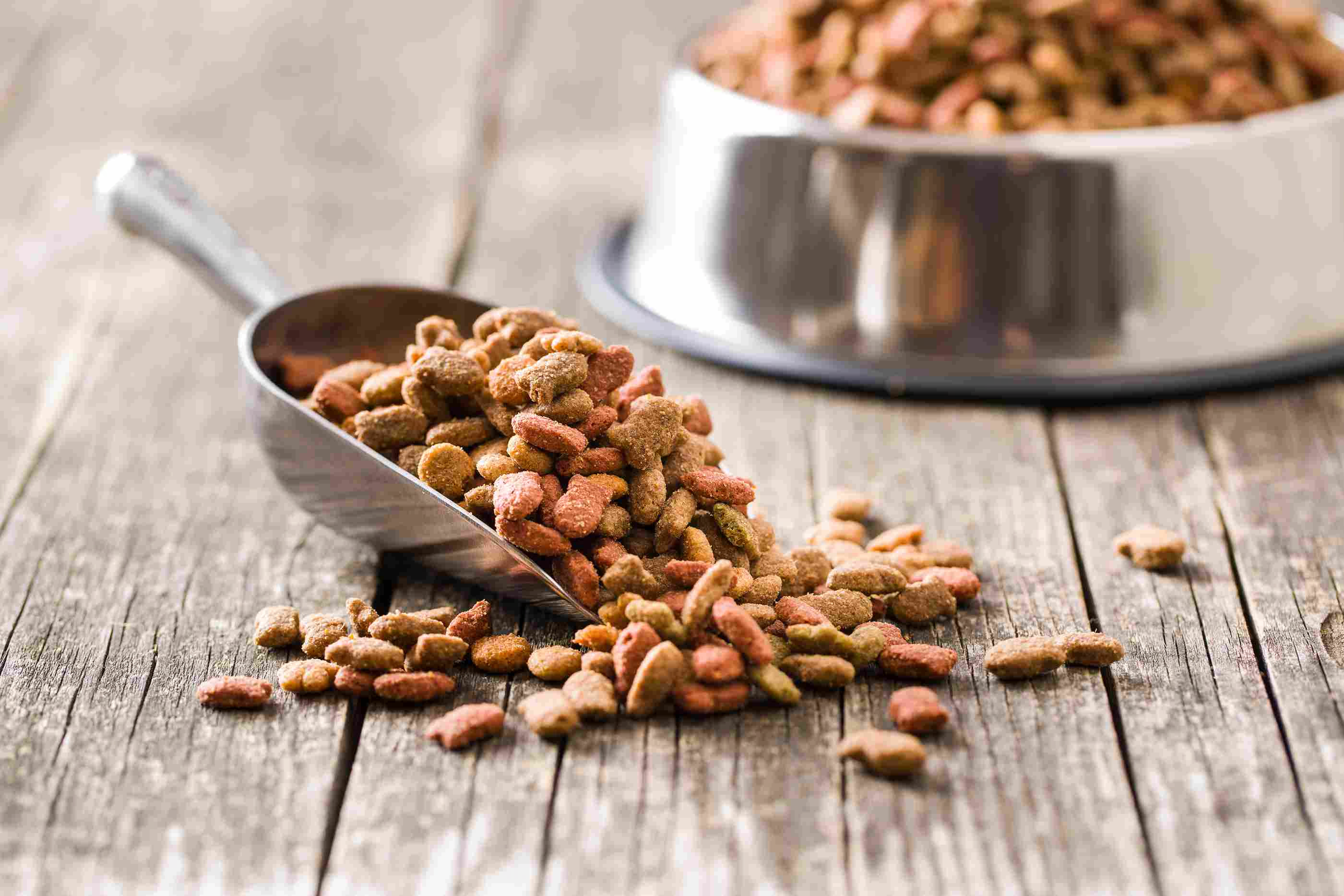 Nutrition
Nutrition
3+ MIN
25/04/2025
Use of Postbiotics in Pets: The Biotics World
While probiotics have been widely studied, postbiotics are emerging as a stable and effective alternative for promoting gut and immune health in pets.
Understanding the differences between these biotic solutions and how postbiotics fit into pet nutrition is essential for manufacturers looking to create high-quality, science-backed pet food products.
The Biotic World: Prebiotics, Probiotics, Synbiotics, and Postbiotics
1. Prebiotics
Prebiotics are dietary fibers that serve as food for beneficial gut bac-teria. They are non-digestible by pets but selectively stimulate the growth and ac-tivity of good bacteria in the gut. Common sources include:
Inulin
Fructooligosaccharides (FOS)
Galactooligosaccharides (GOS)
Prebiotics support a healthy gut microbiome, which in turn enhances digestion and immune function.
2. Probiotics
Probiotics are live microorganisms that provide health benefits when consumed in adequate amounts. They help maintain a balanced gut microbiota and commonly found examples include:
Lactobacillus species
Bifidobacterium species
Saccharomyces boulardii and Saccharomyces cerevisiae
Probiotics can improve digestion, boost immunity, and aid in nutrient absorption. However, their stability in pet food is a challenge, as live bacteria can be sensitive to temperature, require proper storage conditions, and can lose effectiveness over time.
3. Synbiotics
Synbiotics are a combination of prebiotics and probiotics, designed to enhance the survival and activity of beneficial bacteria. The prebiotics provide fuel for the probiotics, improving their effectiveness in supporting gut health.
4. Postbiotics
Postbiotics are bioactive compounds derived from probiotic fer-mentation. Unlike probiotics, postbiotics do not contain live bacteria. However, the microbial source (yeast, funghi or bacteria) can influence the range of bioac-tive compounds. Typically bacterial postbiotics have the greatest diversity of compounds including beneficial metabolites such as:
Short-chain fatty acids (SCFAs)
Biologically active small-size peptides
Exopolysaccharides
Plasmalogens
Enzymes
Vitamins and amino acids
Because postbiotics do not require live organisms to be effective, they are stable, easy to incorporate into pet food, and do not pose risks associated with bacterial overgrowth.
Benefits of Postbiotics for Pets
1. Gut health support
Postbiotics help maintain a balanced gut microbiota, sup-porting digestion and preventing gastrointestinal disorders. They enhance gut bar-rier function, reducing the risk of leaky gut syndrome and inflammatory conditions.
2. Immune system enhancement
Postbiotics interact with the immune system by stimulating protective responses and reducing inflammation. This makes them val-uable for pets with allergies or weakened immune systems.
3. Anti-inflammatory and antioxidant effects
Chronic inflammation is linked to many pet diseases, including arthritis, skin issues, and digestive disorders. Postbiot-ics contain bioactive compounds that reduce oxidative stress and inflammation, promoting overall health.
4. Skin and coat health
A balanced gut microbiome impacts skin health by reduc-ing inflammation and improving nutrient absorption. Postbiotics contribute to a shinier coat and reduced skin irritations in pets.
5. Stress and anxiety management
The gut-brain connection influences pet be-havior. Certain postbiotics help produce neurotransmitters like serotonin, which regulate mood and stress responses, making them beneficial for anxious pets.
How to Incorporate Postbiotics into Pet Nutrition
Functional pet food
Postbiotics can be added to kibble, wet food, and treats, ensuring pets receive consistent health benefits without the need for refrigeration.
Supplements
Powdered or capsule forms of postbiotics allow pet owners to customize dosages based on individual pet needs.
Veterinary formulations
Postbiotics are gaining traction in veterinary medicine, used in therapeutic diets to manage digestive and immune-related conditions.
Conclusion
Postbiotics represent a new frontier in pet nutrition, offering a stable, effective, and science-backed approach to gut health and immune support. Unlike probiot-ics, they do not require live bacteria to be beneficial, making them easier to in-corporate into pet food products.
For pet food manufacturers, understanding and utilizing postbiotics provides an opportunity to create innovative, high-quality products that cater to the increasing demand for functional pet nutrition. By embracing postbiotics, the industry can enhance pet health and well-being, ensuring happier and healthier companion animals.
By Yunior Acosta Aragón
Source: All Pet Food
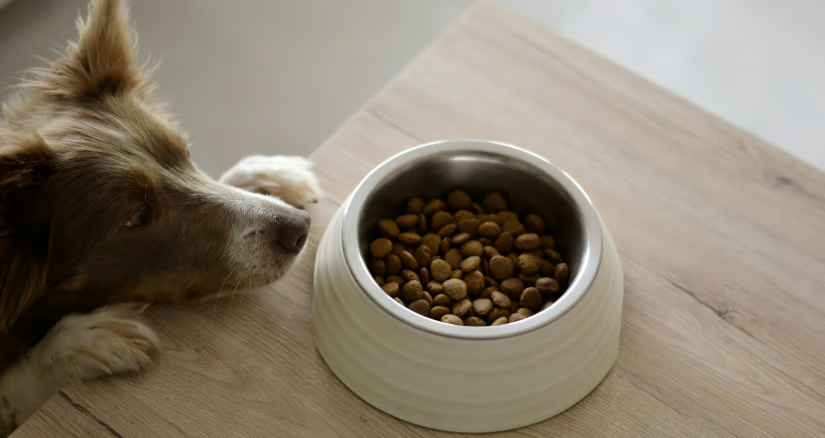 Sanity
Sanity
6+ MIN
23/04/2025
Think Your Pet Has a Food Allergy? Here's What You Should Know First
There is limited data regarding the true incidence of food allergies and intolerances in dogs and cats. One published meta-analysis based on several other studies indicated that cutaneous adverse food reactions (CAFR) observed in veterinary clinics affected between 1% and 2% of all dogs in the evaluated data. For all cats presented to veterinarians in the studies, that number dropped to less than 0.2%. The authors stated, however, that the limitations of this analysis could include geographic differences as well as the criteria used to diagnose CAFR. CAFR is a medical term that describes the symptoms associated with a food allergy.
The key takeaway is that food allergies and intolerances are not very common in our pets, and other causes of itchiness in dogs and cats should always be ruled out first.
The most common types of allergies that manifest as skin problems in pets are flea bite allergies. Even though pet parents may not see fleas on their pets, for some highly allergic individuals, even one flea bite can trigger an immune reaction leading to itchy skin. Other types of allergies that we see in our pets include environmental and contact allergies. Environmental allergies can be caused by some of the same triggers that humans are allergic to, such as mold, pollen, and dust mites. One of the biggest differences between flea and environmental allergies in pets is that they can vary throughout the year. Of course, in some areas, fleas can survive year-round, and indoor allergens can be present at all times, making differentiation harder.
It's always important to rule out flea allergies first. Skin allergy testing can be performed by veterinarians to effectively diagnose environmental allergies. Allergy testing for environmental allergies that relies on blood samples is also available, but is much less reliable. It is important to always rule out flea and environmental allergies before pursuing a food allergy diagnosis in pets.
Once a pet parent and their veterinarian have eliminated flea and environmental allergies, food allergies can then be considered. However, before delving into that topic, it's important to distinguish between food allergies and intolerances.
Understanding the Differences: Food Allergies and Intolerances
Food allergies and intolerances can exhibit similar symptoms in our pets, but the main difference is that a true food allergy involves the pet's immune system, leading to a complex response of inflammatory mediators that can trigger itchy skin or gastrointestinal (GI) problems such as diarrhea, gas, and even vomiting. Food intolerances do not directly involve the pet's immune system; instead, they arise when a pet has difficulty digesting certain foods, leading to similar GI symptoms as true food allergies. True food allergies typically develop from repeated exposure to the offending food or ingredient. Conversely, food intolerance reactions can occur immediately after a pet eats a problematic food. Once the offending food is identified, managing food intolerances may be more straightforward, as it can simply be avoided in the pet's diet.
Food allergies are most commonly caused by an immune-mediated hypersensitivity to certain proteins found in a pet's diet. Due to various complex immune system pathways, the pet's body recognizes a protein as an allergen (a substance causing an allergic reaction), triggering the immune system and ultimately leading to symptoms commonly seen with these conditions, such as itchy skin, feet, ears, and GI symptoms. To complicate things, some pets may be allergic to more than one food or protein ingredient.
Diagnosing Food Allergies in Pets
The only way to truly diagnose a food allergy is through an elimination diet test aimed at identifying which food(s) may be causing the problem. This is often easier said than done. Elimination diets require a commitment from the pet parent to thoroughly understand their pet's diet history and communicate it with their veterinarian, in addition to adhering to specific diets (sometimes homemade) for extended periods. The elimination diet process should begin with feeding a single protein source that the pet has not eaten and ideally a single carbohydrate source for a specified period of time. This period can be referred to as the 'wash out' period, where the pet's symptoms hopefully will resolve or lessen enough to observe a symptom flare-up upon introducing a new food.
There is no definitive consensus among veterinary experts on how long this period should be. One retrospective study indicated that over 80% of pets experienced remission of their allergy symptoms within five weeks for dogs and six weeks for cats. When this period was extended to eight weeks, more than 90% of pets showed no allergy symptoms. However, a longer 'wash out' period may make it more difficult for a pet parent to feed their pets novel (new) food, especially if it is a home-cooked diet. We recommend working with your veterinarian to determine the duration they recommend for this.
Once this period of time is complete, one at a time, common food ingredients (usually proteins) are introduced along with the 'wash out' diet to see if the pet's immune system reacts. If there is no reaction or previous allergy symptoms noted, it is assumed that the pet is not allergic to that ingredient. Ingredients are systematically introduced to identify what the pet is allergic to. Some of the most common allergens in pets are beef, dairy, chicken, and wheat.
Once all offending food ingredients are identified, avoiding them in the pet's diet is critical to prevent allergy symptoms. This can be achieved by feeding novel ingredient diets that do not contain any ingredients identified as causing food allergy reactions.
One issue that may arise is cross-contamination at either the ingredient supplier and manufacturer levels. We recommend that pet parents contact companies to learn about the steps they take to mitigate cross-contamination.
Another way to manage pets with food allergies is to feed them hydrolyzed protein diets. These pet foods contain proteins that have been broken down into smaller pieces, called peptides. This process works because when the protein is reduced to small enough fragments called peptides the pet's immune system does not recognize it as the protein to which it is allergic. In a way, we are tricking the pet's immune system. Hydrolyzed diets are effective for many pets with food allergies, though some pets may still experience issues. This could be due to cross-contamination, as noted earlier with novel diets, or it could simply be that the hydrolyzed protein was not broken down into a small enough peptide so that the allergic pet's immune system still recognized it.
Food for Thought
All said, food allergies and intolerances are not very common overall. Other causes of the pet's symptoms should always be ruled out first. When they do occur, food allergies can be difficult to diagnose, but with patience, dedication, and good veterinary guidance, they can usually be managed to mitigate the uncomfortable symptoms associated with them in our pets.
BSM Partners has experts in product formulation, nutrition, and quality control to assist brands in creating truly novel or hydrolyzed protein diets that help pet parents manage these conditions for their furry friends.
About the Author
Dr. Bradley Quest, DVM, is the Principal Veterinarian at BSM Partners. He has practiced clinical veterinary medicine, developed and tested hundreds of pet food and health products, performs extensive animal health research, and helps navigate pet food ingredient approval for clients.
By Dr. Bradley Quest
Source: BSM Partners
 Sustainability
Sustainability
2+ MIN
21/04/2025
APC Earns Bronze Badge in the EcoVadis Sustainability Rating 2025
The EcoVadis assessment provides a comprehensive view of policies and practices across the categories of Environment, Ethics, Labor & Human Rights, and Sustainable Procurement. With over 185 participating countries, more than 2.8 million companies evaluated, and over 150,000 companies ranked, EcoVadis is a key global benchmark for corporate sustainability performance. In 2025, APC do Brasil stood out in the Environment category, thanks to its commitment to sustainability policies aimed at reducing emissions, optimizing resource use, and contributing to a more sustainable planet.
'This achievement and recognition demonstrates our commitment to sustainability in the global animal nutrition industry. We continue to move forward with our ongoing efforts to reduce the environmental impact of our operations around the world', says Dave Dirks, Chief Operating Officer of APC.
Supplier Leadership on Climate Transition (Supplier LOCT) Program
As part of its sustainability initiatives, APC also announces its achievement of Scope 1, 2, and 3 badges from the Supplier Leadership on Climate Transition (Supplier LOCT) program for greenhouse gas emissions management. The Supplier LOCT program is a global initiative that supports suppliers in reducing greenhouse gas emissions and developing science-based targets for a more sustainable future.
The Supplier LOCT program provides resources and expertise to help suppliers measure their greenhouse gas emissions, set reduction targets, and implement effective strategies. Through this initiative, APC aims to enhance its ability to manage and report its carbon footprint across Scopes 1, 2, and 3, promoting a sustainable future for its operations and supply chain.
'Joining the Supplier LOCT Program is a natural extension of our commitment to sustainability. As a company that prioritizes environmental responsibility, we are excited to collaborate with other industry leaders to reduce emissions, optimize resource use, and contribute to a healthier planet. Our participation will allow us to take concrete actions to further advance our sustainability goals' says Dave Dirks, Chief Operating Officer of APC.
APC is also committed to promoting sustainability throughout its supply chain by integrating sustainable sourcing and production practices, as well as product and operations management. The company continues to innovate and reduce its environmental footprint while delivering high-quality functional protein ingredients derived from blood to improve animal health and nutrition. Achieving Scope 1, 2, and 3 certifications reflects APC's leadership in environmental management and its commitment to building a sustainable future for the animal nutrition industry.
For more information about APC's sustainability efforts, visit: https://apcproteins.com/br/sustentabilidade
For more information on EcoVadis, visit: https://ecovadis.com/pt/
For more information on the Supplier LOCT program, visit: https://supplierloct.com
Source: APC
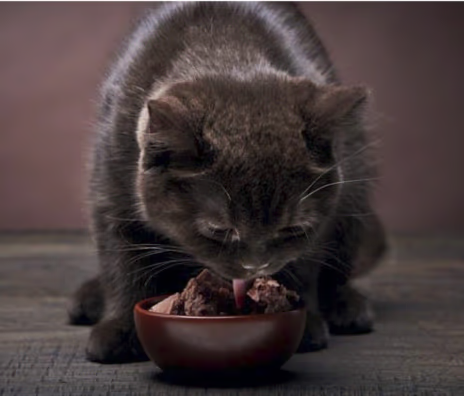 Nutrition
Nutrition
4+ MIN
16/04/2025
Nutritional Needs of Cats and Dogs
Pet food can be complete or complementary. Complete pet food is nutritionally complete: providing all the nutrients in the amounts and proportions your pet needs. Complementary pet food (e.g. treats) is designed to be only a part of the diet and it won't meet the nutritional requirements when fed alone.
Pet food manufacturers have developed the nutritional expertise to ensure pet food contains the right ingredients in the right amounts to supply the needed nutrients. They often work together with independent nutrition scientists or follow guidelines which have been developed by a group of scientists working together.
The broadening knowledge of pet nutrition and food technology has transformed the pet food industry remarkably over the years. It is now widely recognised by the veterinary profession and other stakeholders that improved nutrition is an important factor which helps pets to live longer, healthier lives.
Besides water there are 5 key nutrients:
Proteins
Carbohydrates
Fats
Vitamins
Minerals
The first 3 provide the energy your pet needs for e.g. growth, digestion, temperature regulation and of course activity.
Proteins
Proteins are made up of amino acids. There are hundreds of different amino acids, but a number of these are required for dogs and cats. Pets can produce some amino acids themselves; those are the so-called non-essential amino acids which do not need to be present in the diet. Others are essential and need to be part of the pet food: for dogs there are 10 essential amino acids, for cats there are 11.
Proteins are the building blocks of organs, muscles, bones, blood, immune system and hair and nails. Proteins in pet food can come from various different ingredients, both from animal and vegetable origin like poultry, beef, pork, fish, eggs, corn, rice, peas or soybeans.
It's important that the pet eats the right amount of proteins and that the protein can be easily digested and absorbed, which is influenced by the source of the protein and the processing of the food. In prepared pet food, manufacturers generally select a variety of ingredients to provide the required amount and type of proteins/amino acids.
Excess proteins which are consumed by the pet are not stored in the body and also not used to make even more muscle tissue. Feeding extra protein in excess of the amount that your pet requires provides no health benefit to your pet.
Carbohydrates
Carbohydrates are used by the body to provide immediate energy for activities and are stored in the liver and muscle as glycogen. Energy use is needed for various body functions like metabolism and the function of the brain and nervous system. There exists no minimum level of carbohydrates which needs to be in pet food, but carbohydrates provide a concentrated source of dietary energy and dietary fibre.
There are two types: digestible carbohydrates (starches and sugars) which provide energy and indigestible carbohydrates (fibre) which are important for stool quality and gut motility. Fibres can help in weight management because they are low in calories and help provide the feeling of satiety.
The ingredients providing carbohydrates are mainly plant ingredients like corn, barley, peas, rice, wheat and potatoes. Dietary fibre sources include for instance dried beet pulp, wheat bran or soybean hulls. Many sources of carbohydrates also provide other nutrients like protein, fat or vitamins.
Because of the manufacturing process of grinding and cooking the carbohydrates become easily digestible. A genetic change in the ancestors of our modern dogs (compared with wolves) allowing them to thrive on a diet rich in starch was a crucial step in their early domestication. Also cats can utilise glucose from digesting starch in their diet. A key exception is the pet's ability to digest lactose (milk sugar) because they have lower levels of the enzyme lactase required to split the lactose into individual sugars.
Dietary fat
Fats in pet food are a source of essential fatty acids which are needed to make certain hormones and maintain the cell membranes. Certain vitamins (A, D, E and K) can only be absorbed, stored and transported by fat. Dietary fats improve palatability and add texture for greater enjoyment of the food. And of course, fats are a great source of energy because they provide about 2 ½ times the level of energy that proteins or carbohydrates can provide. So especially for active animals fats are important, while at the same time we need to be careful with the fat intake for many indoor pets where controlling fat intake helps them not become overweight or obese.
Fats in pet food come from animal and vegetable sources.
Two key fatty acid families are the omega-3 and omega-6 (or n-3 and n-6) families. Omega-3 fatty acids are needed for cell membranes and reduces inflammation. Good sources of omega-3 fatty acids are fish, shellfish and flaxseed. Omega-6 fatty acids are important to aid in the process of repairing tissue and are found in vegetable oils.
Minerals & Vitamins
The major or macro minerals needed in the body are calcium, phosphorus, potassium, sodium, chloride and magnesium. The amounts needed of the trace elements are much smaller and these include for instance iron, copper and selenium.
Vitamins are nutrients needed in very small amounts, but they enable many functions in the body. Dogs and cats cannot make all the vitamins they need; so these must be supplied by the food.
Minerals and vitamins are partly provided by the ingredients which deliver the major nutrients of protein, carbohydrates and fat and the other minerals and vitamins are added to the recipe.
Download the factsheet or click here for more fact sheets.
Source: FEDIAF
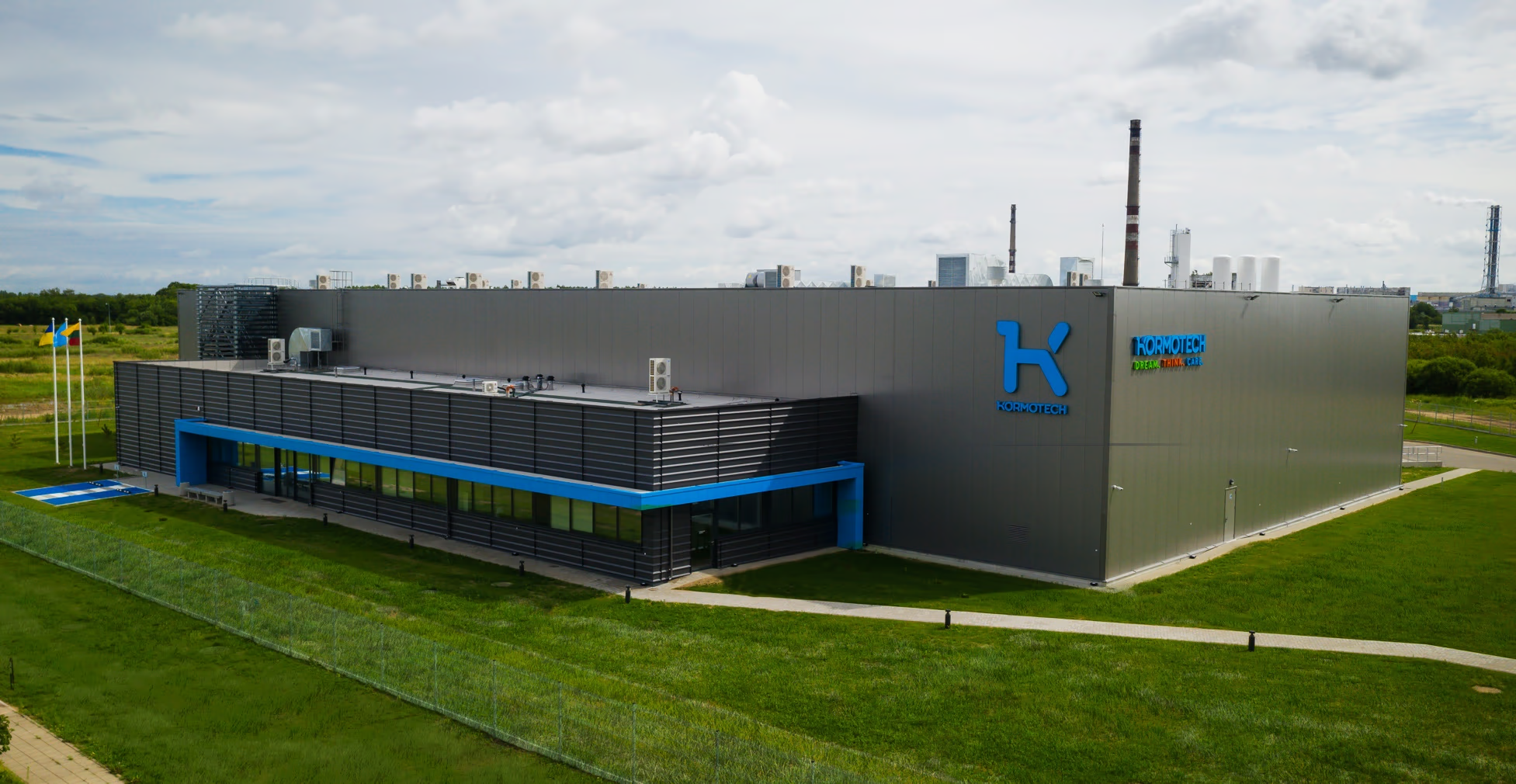 Manufacturers
Manufacturers
2+ MIN
15/04/2025
Kormotech Expands to Qatar and Nigeria, Reaching 46 Countries Worldwide
In Qatar, Kormotech supplies Club 4 Paws cat food, while in Nigeria, both cat and dog food from the Club 4 Paws brand will be available in pet stores. The pet food market in the MEA region is steadily growing: it is projected to reach $6.46 billion by 2028, up from $5.39 billion in 2023. The compound annual growth rate (CAGR) is expected to be 4.32% through 2033. This growth is attributed to an increase in pet ownership, particularly among young people and the middle class, as well as a rising focus on animal health. "Compared to developed markets, the competition in Qatar and Nigeria is lower, but these markets are growing rapidly," says Mykola Deviatov, Head of Strategic Business Unit 3 – South-Eastern Europe, Central Asia & Middle East. Before entering the markets of Qatar and Nigeria, Kormotech Group of Companies adapted its products to meet the needs of local consumers and expanded its flavor range by adding more options with chicken, lamb, and fish. Pet owners in the MEA region prefer natural ingredients, functional additives, and vitamins in pet food, as evidenced by the growing demand in the premium and super-premium segments. However, consumers still prioritize reaching the optimal balance between price and quality. "Local consumers tend to trust established manufacturers, but they are also open to new brands that offer a balanced composition at an affordable price," says Mykola Deviatov. "Kormotech's products meet these expectations." Kormotech has been expanding its presence in the Middle East and Africa since 2019. The company's brands are represented in Turkey, Libya, Egypt, Lebanon, Jordan, Israel, Morocco, Saudi Arabia, and other countries. Over the past five years, sales in this region have grown tenfold. "We expect not only increased sales volumes but also strengthened brand positioning in the MEA region with our entry into the Qatar and Nigeria markets," says Mykola Deviatov. "We see great potential in building long-term partnerships with local distributors." To enhance collaboration with partners and explore new opportunities, Kormotech Group of Companies will participate in PetWorld Arabia 2025 – an international B2B exhibition for the pet business in the Middle East and Africa, which will take place on April 19-20 in Dubai (UAE). About Kormotech Kormotech is an international family-owned company with Ukrainian roots, producing high-quality pet food for cats and dogs under the brands Optimeal, Delickcious, Club 4 Paws, Hav!, Miau!, and My Love since 2003. The company operates manufacturing facilities in Ukraine and the EU. Its product range includes over 650 items. Kormotech is a market leader in Ukraine, ranks among the top 50 global pet food manufacturers, and is also in the top 21 most dynamic pet food producers. The company's products are available in 46 countries worldwide, both under its own brands and the brands of partner companies. Source: Kormotech
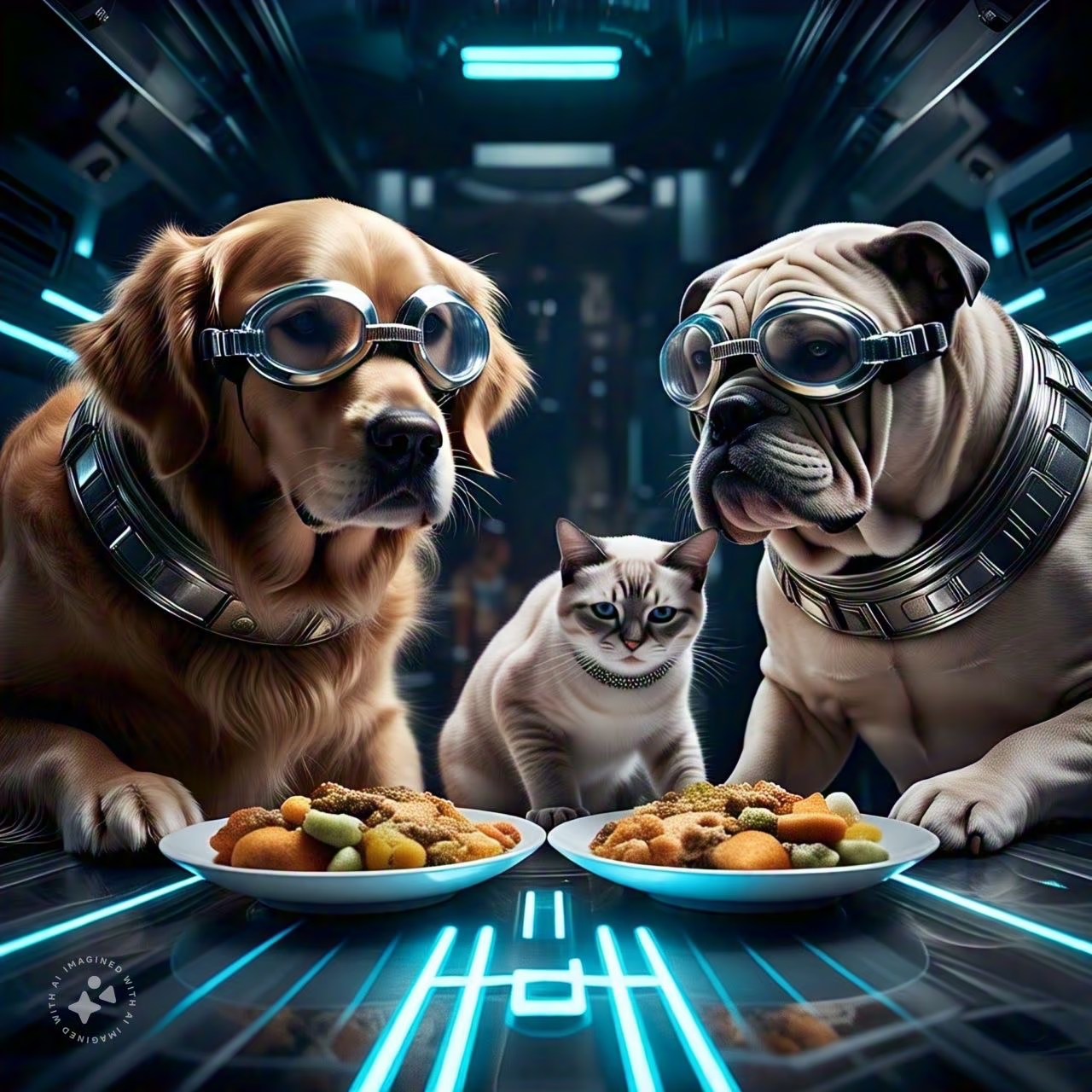 Insect Based
Insect Based
4+ MIN
15/04/2025
Por Josiane Volpato
Ingredients and Trends in the Pet Food Sector in 2025 (Part 1)
This reflects the growth in the companion animal population and the humanization of pets. As a result, consumers are concerned about and researching the ingredients used in their pets' food and are more demanding about product quality. Consequently, the dog and cat food sector is constantly readjusting, driven by global trends and changes in habits that influence consumers' behavior.
The pet food market tends to evolve based on the results of seeking new products within the market through technological improvement, constant search for innovation, and stepwise transformations in consumer behavior. By 2025, expectations focus on sustainability in terms of food and biodegradable and renewable packaging. In this way, the formulation of food with insect protein and the use of eco-packaging increase. However, is using insects in pet food just an emerging trend or a long-lasting one?
According to the United Nations (UN), the world population growth is expected to reach 9 billion people by 2050. Along with this, strategies are being implemented to reduce the competence of protein sources for humans and meet the global demand for proteins for pets; one of these alternatives is insect proteins that aim to reduce competition. Thus, with the good acceptability by dogs and cats of food formulated with this ingredient, it is believed that their search tends to increase, making the projection in insect farming a long and lasting path, even because it is a sustainable source due to its farming model and low use of water resources.
Focusing on sustainability, using insect-based proteins represents a step towards eco-friendly formulations. Still, this effort loses its impact if food is not packaged with materials that minimize the environmental impact. That is why many companies choose packaging made of sustainable materials and production processes with fewer pollutants. This packaging, produced from organic materials such as recycled paper or bioplastics, naturally decomposes in the environment, reducing plastic waste and showing its commitment to sustainability and ecosystem preservation.
Recycling, the use of nutrients, and the struggle to meet the protein needs of the population are important issues that make poultry viscera meal a widely used nutrient in the formulation of dog and cat food as the main source of protein. It is an ingredient rich in amino acids, minerals, essential fatty acids, and a sustainable one due to the use of inedible parts by humans that are thrown away in the environment.
As a result, manufacturers of poultry viscera meals are always working to enhance their product quality and meet the nutritional requirements of the pet food industries. A widely adopted alternative for the best utilization of these ingredients is enzymatic hydrolysis, which breaks big proteins into tripeptides, dipeptides, and free amino acids, facilitating absorption and the use of these molecules by the animal organism.
Therefore, by 2025, it is expected that the amount of food made of poultry viscera meal enzymatic hydrolyzed increases, aiming at the different benefits these meal peptides provide to animal health; because of their low molecular weight, they can be easily absorbed and used by the organism. Bioactive peptides strengthen the immune system and offer additional functions, including antioxidant, antimicrobial, and anti-inflammatory activities. However, the most recognizable characteristic is its hypoallergenic property.
As the poultry viscera meal enzymatic hydrolyzed has peptides with bioactive activities, it is the main ingredient used in the formulation of food adjuncts used in diets to treat gastrointestinal disorders, hypersensitivity, and food intolerance, therefore, its use tends to increase even more.
These characteristics make hydrolyzed proteins and insect meals the most promising alternative in the pet food market by 2025.
References
Bassi Scarpim, L., de Ramos, E.C., Graziele Pacheco, L., Goloni, C., de Souza Theodoro, S., de Souza Ávida de Castro, T., Carciofi, A.C., 2024. Hydrolysed poultry byproduct meal in extruded diets for cats. Arch. Anim. Nutr. 78, 45–59. https://doi.org/10.1080/1745039X.2024.2312700
Perez-Velazquez, M., Millanes-Mora, M.A., González-Félix, M.L., 2024. Avaliação da hidrólise de farinha de larvas de mosca soldado negra parcialmente desengordurada em dietas para tilápia do Nilo Oreochromis niloticus. Anim. Feed Sci. Technol. 307, 115831. https://doi.org/10.1016/j.anifeedsci.2023.115831
Pet Food Market Size & Forecast 2025-2035 [WWW Document], n.d. . Metatech Insights. URL https://www.metatechinsights.com/industry-insights/pet-food-market-1142 (accessed 12.11.24).
Pet Supplements in the US, 10th Edition Report [WWW Document], n.d. . Free. Group. URL https://www.freedoniagroup.com/packaged-facts/pet-supplements-in-the-us (accessed 12.11.24).
UN/DESA Policy Brief #102: Population, food security, nutrition and sustainable development | Department of Economic and Social Affairs [WWW Document], n.d. URL https://www.un.org/development/desa/dpad/publication/un-desa-policy-brief-102-population-food-security-nutrition-and-sustainable-development/ (accessed 12.11.24).
Zóia Miltenburg, T., Uana da Silva, M., Bosch, G., Vasconcellos, R.S., 2021. Effects of enzymatically hydrolysed poultry byproduct meal in extruded diets on serum angiotensin-converting enzyme activity and aldosterone in cats. Arch. Anim. Nutr. 75, 64–77. https://doi.org/10.1080/1745039X.2020.1849899
Bosch, G., Swanson, K.S., 2021. Effect of using insects as feed on animals: pet dogs and cats. J. Insects Food Feed 7, 795–805. https://doi.org/10.3920/JIFF2020.0084
Cesar, C.G.L., Marchi, P.H., Amaral, A.R., Príncipe, L. de A., Carmo, A.A. do, Zafalon, R.V.A., Miyamoto, N.N., Garcia, N.A.C.R., Balieiro, J.C. de C., Vendramini, T.H.A., 2024. An Assessment of the Impact of Insect Meal in Dry Food on a Dog with a Food Allergy: A Case Report. Animals 14, 2859. https://doi.org/10.3390/ani14192859
By Josiane Volpato, Ingrid Caroline da Silva, Isabela Bogo y Fernando González
Source: All Pet Food Magazine
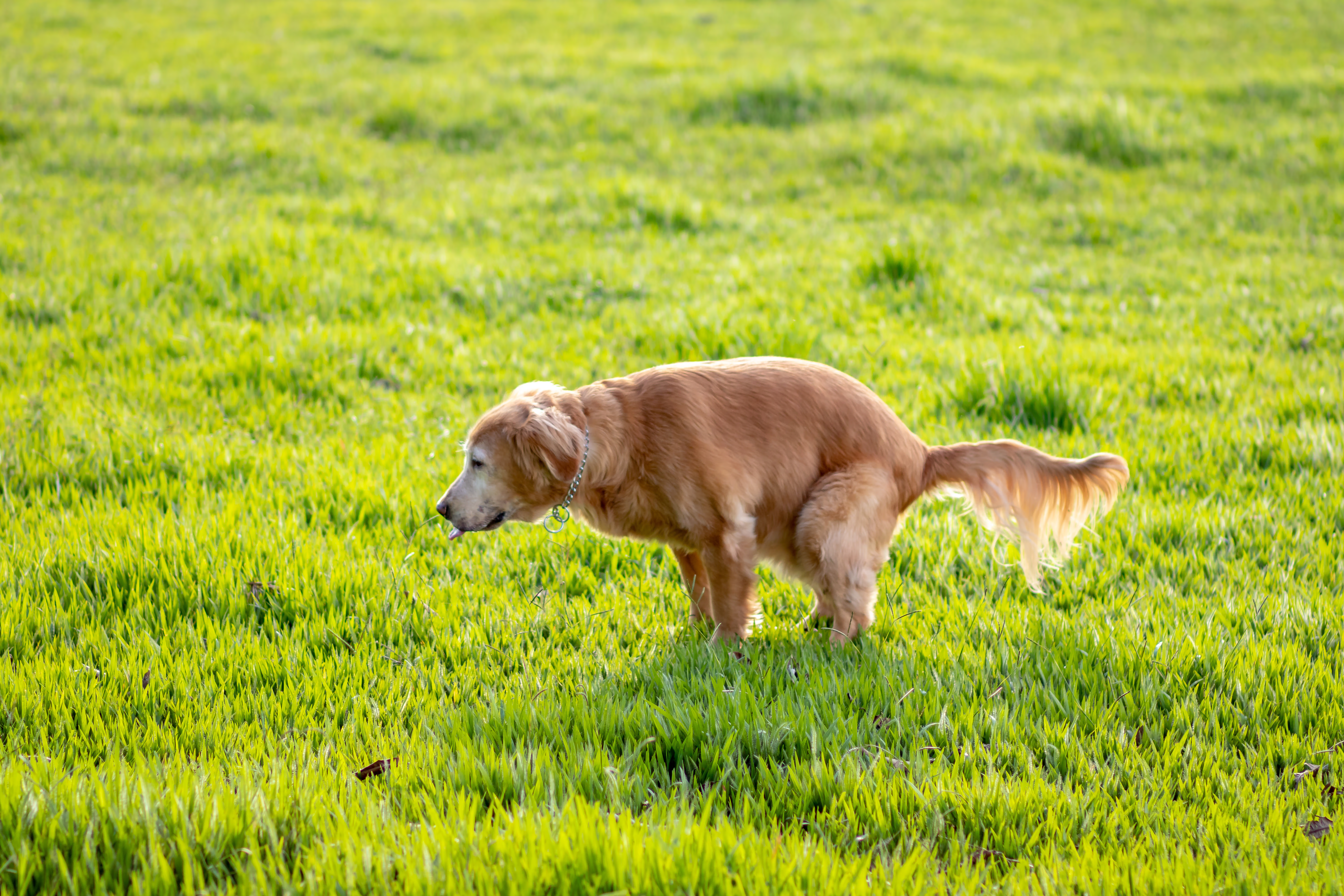 Sustainability
Sustainability
9+ MIN
14/04/2025
Food, Defecation and Environment: A Glance to Improve the Impact (Part 2)
Life Cycle Analysis in Dog and Cat Ownership and the Defecation Production
As we mentioned in the article in the last issue, we provide further information about this tool, which has become an interdisciplinary research field with great potential for scientific and technological production. The Brazilian LCA has been spread in the academic area, industries, and the government, which supports the green label program and the Environmental Product Declaration. In Brazil, among the studies applying the Life Cycle Analysis are those on agriculture, livestock, and product development (Souza et al. 2017).
Even though in Brazil there has been increasing research about LCA use and its implementation in companies during the last few years, there is still a big field of study and opportunities to be explored. For example, regional environmental impacts related to dogs and cats' environmental footprints and their effects have not been analyzed with this approach.
Costa et al. (2024) used the LCA to evaluate dry food impact in Brazil considering the following stages: food manufacturing, packaging production, and product distribution (from the industry to the sales process). They found that food formulation provides almost 70% of the available impact (Figure 2), which mainly contributed to the impact of soil and marine eutrophication, acidification, particulate material, and climate change —that represents 80% of the total environmental impact of raw material selection (Figure 3). LCA activities involving product consumption were not studied.
Figure 2: Contribution (percentage) of each stage in pet food manufacturing and environmental impacts. Published by Costa et al. (2024).
Figure 3: Contribution of the raw materials selection impact category. Published by Costa et al. (2024).
Only one European study investigated the shelf-life end of pet waste from the LCA perspective. Yavor et al. (2020) analyzed three points of view (Figure 4) and discovered that the urine and feces of an average dog have a potential climate change and freshwater eutrophication of 8,200 kg of carbon dioxide equivalent and 5 kg of phosphorus equivalent respectively. For 13 years, urine (≅ 44%) and feces (≅ 43%) have mainly contributed to freshwater eutrophication (caused by phosphorus contained in feces) and significantly in ecotoxicity (≅50%).
The produced waste is just a factor in the food use stage and does not define sustainability in pet ownership. Generally, diet effects exceed the other stages. However, quantifying the flows of this substage adequately can complement the existing regional information and identify possibilities or technologies for the environmental footprint cycle of dogs and cats, especially nitrogenated waste and potentially toxic nutrients in feces and urine.
Figure 4. Dogs' defecation system to the shelf-life end of waste. Published by Yavor et al. (2020).
Advantages and Challenges of the LCA
Life Cycle Analysis is a methodology used to evaluate products and services environmental impact, from manufacturing to elimination. It is useful since it analyzes all the stages in the product life cycle integrally. This approach comprises systems at different levels and regions throughout flow evaluation, which enter and leave the system. Its results can combine other methodologies to better define system sustainability; it can be used in complex environmental analysis for objective decision-making and to formulate plans that satisfy sustainable development needs.
Using the LCA has the potential to:
Identify critical points and the impacts of a process, product, or service.
Enhance or develop products and services.
Optimize mechanical systems and energy recovery.
Compare equivalent products.
Define criteria for ecological labels.
Support the creation of politics of sustainability.
Provide clear information to consumers.
Manage and preserve natural resources.
These characteristics can be extremely interesting to characterize dog and cat waste, towards sustainability. However, here are some challenges and limitations to consider:
The number of people and experienced professionals using this methodology is still minimal.
There are no accurate and solid regional inventories about the product's life cycle, especially in Brazil. Databases are essential to save time and resources in LCA study.
This shortage is a problem as Brazil has diverse production, agriculture practices, weather, and technology. Using a specific database from Brazil would help to carry out accurate and adequate research for more sustainable production. Another challenge is to follow general rules for product characterization, such as Product Environmental Footprint Category Rules (FEDIAF, 2018) that ensure standardized studies and suitable results.
Final Thoughts
So far, impacts generated by pet ownership have not been defined in Brazil. The LCA focus can help to characterize them, predict harmful effects, minimize the short/long-term impact, and reach global and sustainable goals. However, the scientific data on cat and dog ownership used by this approach is still lacking.
Defecation and its accumulative effects are related to pet ownership, being a substage in food usage which also must be studied for its environmental impact. Understanding the impact helps evaluate pet possession in an integrated way. Brazil has unique characteristics and highlights the importance of studying and characterizing local impacts. Research can offer new insights as well as improve awareness and promote pro-environmental behavior in society and industries, helping the environment and sustainability in dog and cat ownership, such important species for human beings.
References
ABINPET. PET Mercado Brasil (2024). Asociación Brasileña de la Industria de Productos para Mascotas. www.abinpet.org.br/. Fecha de consulta: 05 de agosto de 2024.
ABNT (Asociación Brasileña de Normas Técnicas), 2009a. NBR ISO 14040: Gestión Ambiental - Análisis de Ciclo de Vida - Principios y estructura. Río de Janeiro.
ABNT (Asociación Brasileña de Normas Técnicas), 2009b. NBR ISO 14044: Gestión Ambiental - Análisis de Ciclo de Vida - Requisitos y directrices. Río de Janeiro.
ABREMA. Panorama de los residuos sólidos en Brasil 2023 (2023). Disponible en: https://abrelpe.org.br/panorama-2020/. Fecha de consulta: 10 de agosto de 2024.
Cinquepalmi, V.; Monno, R.; Fumarola, L.; Ventrella, G.; Calia, C.; Greco, M. F.; De Vito, D.; Soleo, L. (2013). Contaminación ambiental por heces de perro: ¿un problema de salud pública? Revista Internacional de Investigación Ambiental y Salud Pública, 10(1), 72–84. https://doi.org/10.3390/ijerph10010072
Costa, J. L. G.; Bánkuti, F. I.; Oiko, O. T.; Monti, M.; Loureiro, B. A.; Henríquez, L. B. F.; Florindo, T. J.; Vasconcellos, R. S. (2024). Análisis de ciclo de vida de la producción de un alimento extruido para perros en Brasil. Revista de Producción Más Limpia, 458. https://doi.org/10.1016/j.jclepro.2024.142505
FEDIAF (2021a). Federación Europea de la Industria de Alimentos para Animales de Compañía. FEDIAF Guías Nutricionales para Alimentos Completos y Complementarios para Perros y Gatos. 98 págs.
FEDIAF (2018b). Reglas de Categoría de Huella Ambiental de Productos (PELCR): Alimento preparado para perros y gatos. FEDIAF, Bruselas.
Hobbie S. E.; Finlay, J.C.; Janke, B. D.; Nidzgorski, D. A.; Mijo D. B; Baker, L. A. Contraste de los presupuestos de nitrógeno y fósforo en las cuencas urbanas y las implicaciones para la gestión de la contaminación del agua urbana. Proc Natl Acad Sci U S A (2017). 18 de abril; 114(16):4177-4182. doi: 10.1073/pnas.1618536114. Epub 3 de abril de 2017. Fe de erratas en: Proc Natl Acad Sci U S A. 16 de mayo de 2017; 114(20):E4116. doi: 10.1073/pnas.1706049114. PMID: 28373560; PMCID: PMC5402417.
Li, P.; Wu, G. (2024). Características de la nutrición y el metabolismo en perros y gatos. En Avances en Medicina Experimental y Biología (Vol. 1446, p. 55-98). Salmer. https://doi.org/10.1007/978-3-031-54192-6_4
Li, Z.-M., & Kannan, K. (2024). Excreción urinaria y fecal de 121 sustancias químicas ambientales en perros y gatos: importancia de las heces en el biocontrol de las exposiciones.
Macdonald, M. L.; Rogers, Q.; Rmorris, J. G (1984). Nutrición del gato doméstico, un mamífero carnívoro. Revista anual de nutrición, v. 4, n. 1, p. 521-562.
Martínez-Sabater, E.; García-Muñoz, M.; Bonete, P.; Rodríguez, M.; Sánchez-García, F. B.; Pérez-Murcia, M. D.; Bustamante, M. A.; López-Lluch, D. B.; Moraleja, R. (2019). Manejo integral de las heces de perro: Compostaje versus digestión anaeróbica. Revista de Gestión Ambiental, 250. https://doi.org/10.1016/j.jenvman.2019.109437
Morris, J. G (2002). Los requerimientos idiosincrásicos de nutrientes de los gatos parecen ser adaptaciones evolutivas inducidas por la dieta. Revistas de investigación en nutrición, v. 15, n. 1, p. 153-168.
NRC. Consejo Nacional de Investigación. Requerimientos de nutrientes de perros y gatos.Washington, DC: Nacional Academias Prensa 2006. 424 págs. Disponible en:
<https://nap.nationalacademies.org/catalog/10668/nutrient-requirements-of-dogs-andcats\>. Consultado: 02
Agosto. 2024.
Okin, G. S. Impactos ambientales del consumo de alimentos por perros y gatos. PLOS UNO, v. 12, n.
8, p. E0181301, 2017.
ONU. Asamblea General de las Naciones Unidas. Transformar nuestro mundo: la agenda 2030 para el desarrollo sostenible. (2015). Disponible en: https://sdgs.un.org/2030agenda.
Programa de las Naciones Unidas para el Medio Ambiente ( Programa de las Naciones Unidas para el Medio Ambiente (2024). Resumen ejecutivo Perspectivas mundiales de la gestión de residuos 2024: Más allá de la era de los residuos. Convertir la basura en un recurso. Nairobi. https:// wedocs.unep.org/20.500.11822/44992
Rezende, V. T.; Rodrigues, G. R. D.; Boaventura, J. F.; Alves, L. K. S., Zanini, L. D., Nacimento, R. A.; Gameiro, A. H. (2022). Aproximación preliminar a la carga ambiental generada por dietas de humanos, animales de producción y mascotas a partir del análisis de flujos de nitrógeno y fósforo. Nuevos retos de la investigación en nutrición y producción animal.
Ritchie, H.; Roser, M. Impactos ambientales de la producción de alimentos (2020). Disponible en:
<https://ourworldindata.org/environmental-impacts-of-food>. Fecha de acceso: 25 jul. 2024
Rousseau, M.; Guénard, F.; Garneau, V.; Allam-ndoul, B.; Lemieux, S.; Pérusse, L.; Vohl, M.C (2019). Asociaciones entre las fuentes de proteínas dietéticas, los BCAA plasmáticos y los niveles de acilcarnitina de cadena corta en adultos. Nutrientes, v. 11, n. 1, p. 173-189.
SEEG. Sistema de estimación de emisiones de gases de efecto invernadero, 2022. Desafíos y oportunidades para la reducción de emisiones de metano en Brasil. Disponible en: https://plataforma.seeg.eco.br. Fecha de consulta: 11 de agosto de 2024.
Singh, P.; Banton, S.; Bosch, G.; Hendriks, W. H.; Shoveller, A. K. (2024). Más allá del tazón: comprensión de los requisitos de aminoácidos y la digestibilidad para mejorar las métricas de calidad de las proteínas para alimentos para perros y gatos. En Avances en Medicina Experimental y Biología (Vol. 1446, p. 99-134). Salmer. https://doi.org/10.1007/978-3-031-54192-6_5
Souza, C. G., Barbastefano, R. G., & Teixeira, R. C. (2017). Investigación en análisis de ciclo de vida en Brasil: características, interdisciplinaricalidad y aplicaciones. Revista Internacional de Evaluación del Ciclo de Vida, 22(2), 266–276. https://doi.org/10.1007/s11367-016-1150-5
Su, B.; Martens, P. Impactos ambientales del consumo de alimentos por perros de compañía y gatos en Japón. Indicadores Ecológicos, v. 93, p. 1043–1049, 2018. Disponible en:
<https://doi.org/10.1016/j.ecolind.2018.06.015>.
Swanson, K. S.; Carter, R. A.; Yount., T. P.; Preston, J. A.; Buff, R. (2013). Sostenibilidad nutricional de los alimentos para mascotas. Avances en Nutrición, 4: 141-150. https://doi.org/10.3945/an.112.003335.
Yavor, K. M.; Lehmann, A.; Finkbeiner, M. (2020). Impactos ambientales de un perro de compañía: un estudio de caso de ACV. Sostenibilidad (Suiza), 12(8). https://doi.org/10.3390/SU1208339
By Jéssyka Laura Galdino Costa, Ricardo Souza Vasconcellos (Universidad Estatal de Maringá - Brazil), Fernando José González González (Universidad de la Salle - Colombia)
Source: All Pet Food Magazine
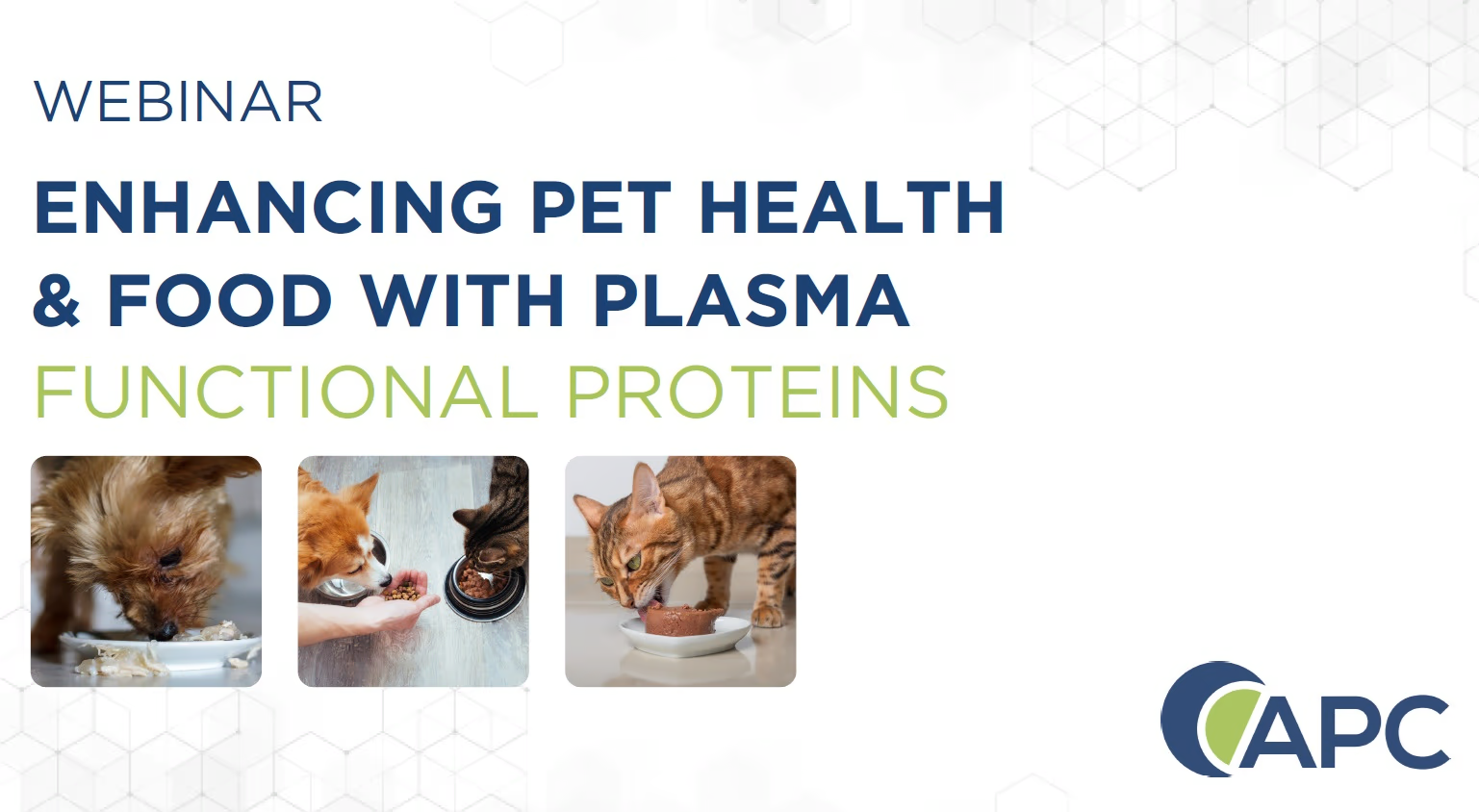 Other microingredients
Other microingredients
2+ MIN
11/04/2025
Driving Innovation in Pet Nutrition: APCs Webinar Highlights the Role of Plasma Proteins
On April 2, 2025, APC hosted a webinar titled Enhancing Pet Health & Food with Plasma Functional Proteins, presented by Dr. Ricardo Souza Vasconcellos. The session attracted 62 participants from the pet food industry, focusing on the innovative use of plasma functional proteins to improve pet food formulations. Dr. Vasconcellos, Associate Professor at the State University of Maringá, discussed the multifaceted benefits of incorporating plasma functional proteins into pet food. He highlighted how these proteins can enhance product quality by improving texture, water retention, and durability in both wet and extruded pet foods. Additionally, he emphasized their role in boosting palatability and digestibility, ensuring pets find the products appealing. Beyond these advantages, plasma functional proteins offer significant whole body health benefits, including immune support, better gut health, and improved cognitive function. The webinar underscored the evolving nature of the pet food industry and the importance of adopting innovative solutions to stay competitive. Plasma functional proteins are emerging as a game-changing ingredient, offering technological versatility suitable for various product types, such as loaf, pâté, chunks, gravies, and lickable treats. Their nutritional superiority, packed with essential amino acids and high digestibility, coupled with health-enhancing properties like immune support and cognitive benefits, position them as a valuable addition to pet food formulations. For those who missed the live session, APC offers access to this and other on-demand webinars, providing pet food professionals with valuable insights into enhancing product quality and nutritional value. CLICK HERE! Source: All Pet Food
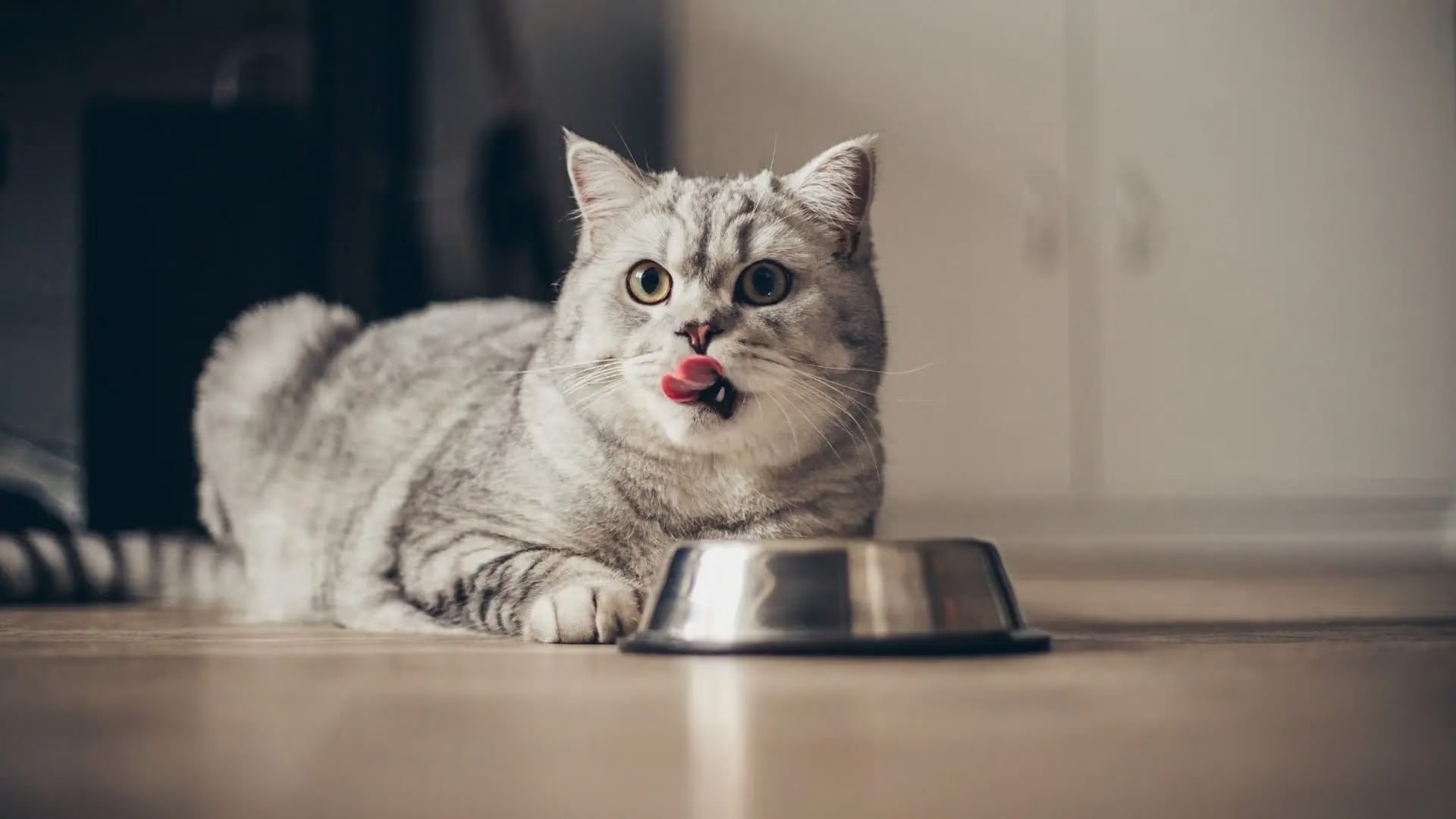 Cats
Cats
3+ MIN
10/04/2025
Analysis: How Avian Flu Cases in Domestic Cats Can Impact the Manufacturing Industry
According to the US Department of Agriculture (USDA), it is believed that 40 domestic cats in the US have been infected with avian flu since 2025 began. With limited testing available, the true scope and causes of the outbreak remain unclear.
This has posed challenges for certain industry stakeholders, with at least some blame falling on raw cat food producers.
Raw Food Reeling
Only a few HPAI cases in cats have been traced directly to batches of pet food.
Oregon-based Northwest Naturals recalled its frozen raw turkey recipe in December after reports of HPAI contamination. Soon after, public health officials in California warned consumers against purchasing products from Monarch Raw Pet Food.
The company released a statement on 3 January denying this report. 'We want to assure our customers and the public that these claims are not substantiated by any scientific evidence at this time,' it said.
In February, the Departments of Agriculture in Oregon and Washington released a warning to consumers after both states detected HPAI in cats who had eaten food from the raw brand Wild Coast Raw. On 1 March, the company announced an updated voluntary recall of many of its poultry products.
'We are fully confident in our quality control processes and procedures and their ability to ensure that our customers' pets are served safe and nutritious food,' Wild Coast's founder, Tyler Duncan, says in a statement. 'Our ingredients meet the highest industry standards and are inspected before use.'
Savage Cat Food was also reportedly linked to an HPAI case, but the company has since received negative test results from the National Veterinary Services Laboratories.
It's unclear how the ongoing HPAI scare may impact these and other raw pet food companies' bottom lines. Monarch Raw, Wild Coast and Northwest Naturals did not respond to requests for comment by GlobalPETS.
Tracing the Source
While the source of infection in the raw pet food cases is unclear, the nature of HPAI means that the virus likely ended up in the pet food after infecting poultry on farms. According to Veterinary Pathobiologist Scott Weese, it's often clear when HPAI reaches a farm. However, birds that are infected early may be slaughtered before the disease is detected and make their way into the food system.
In most cases, cooking or high-pressure pasteurizing can eliminate the virus from meat. However, raw pet food companies do not use these processes.
Weese says the virus seems to be spreading mostly through raw poultry. 'Beef-based diets are probably pretty low risk because even though it's endemic in dairy cattle, it really seems to focus on the udder – the virus concentrates there. It's shed in milk.'
Testing and Regulatory Landscape
Testing is variable across North America, as diagnostic labs have little standardization. Limited government monitoring of animals and animal food means some testing may only happen if a pet owner requests or pays for it. Weese states that this presents a barrier to getting samples and adequately mapping the problem.
'A lot of cats that have this virus tend to die fairly quickly,' he notes. 'Or if they're terminal and they get into clinic… that's hard for people to decide to spend money on a diagnostic test when their animal's dead.'
In January, the Food and Drug Administration (FDA) announced that dog and cat food producers will be required to consider HPAI in food safety plans. The agency states companies 'must identify and evaluate known or reasonably foreseeable hazards' associated with the flu. However, it did not outline specific testing requirements, and enforcement may be limited.
In response, the Pet Food Institute (PFI), which represents many US food manufacturers, announced its support for revisiting safety plans. 'Pet food makers love animals, and the safety of pet food is their highest priority. They recognize the risks to pets that are associated with HPAI, and they have strict processes in place to mitigate those risks,' PFI CEO Dana Brooks says.
PFI also cited Centers for Disease Control and American Veterinary Medical Association guidance, which advises against feeding pets raw food.
By Dan O'Connor
Source: GlobalPETS
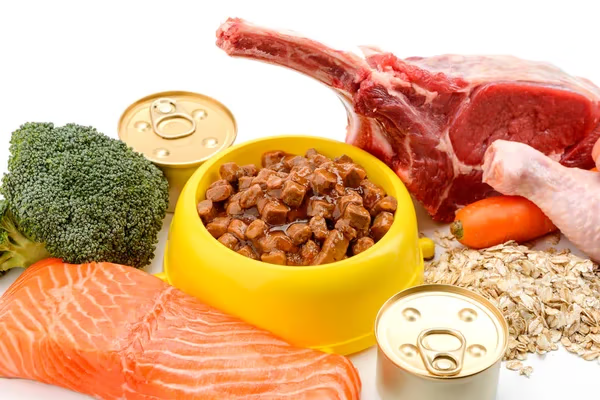 Nutrition
Nutrition
2+ MIN
09/04/2025
Por Candela Bonaura
Tendencies and Trends: Where Dog and Cat Nutrition Goes
Firstly, we feel deep empathy and love for our pets and start sharing nutritional habits and food they cannot digest, making them suffer from disorders or diseases. For example, obesity is not only a disease but also triggers heart and articular conditions, diabetes, or oncological disorders.
We should destroy the myth that being fatty means being healthy and be conscious that we demonstrate affection by sharing food, that is why we should seek healthy treats.
Nowadays, the market is prepared for this and even more; nutrition programs consider a small percentage of treats so as not to exceed the daily calorie intake.
On the other hand, there are feeding tendencies or food that, in my opinion, are insecure and not based on our pets' actuality. Is BARF or raw food a tendency or a trend with little scientific basis?
Sometimes, trends cause discomfort and are not always accurate. The truth is that cats and dogs have been able to differentiate from their wild ancestors, and it is not secure to replace the prey concept with raw diets, lacking tests and norms that ensure safety and meet nutritional profiles and macro/micronutrient requirements.
Once again, I highlight the range of information in the industry about different types and nutritional proposals, such as homemade food, dry and canned wet food, treats, and snacks, all with their nutritional profiles. As professionals, it is important to understand this to recommend the best option to each patient without making tendencies become an unproven trend but based on evidence that reduces the risk of error and enhances dog and cat well-being. By doing it, we promote health and quality of life.
By Dr. M. Candela Bonaura
Source: All Pet Food Magazine
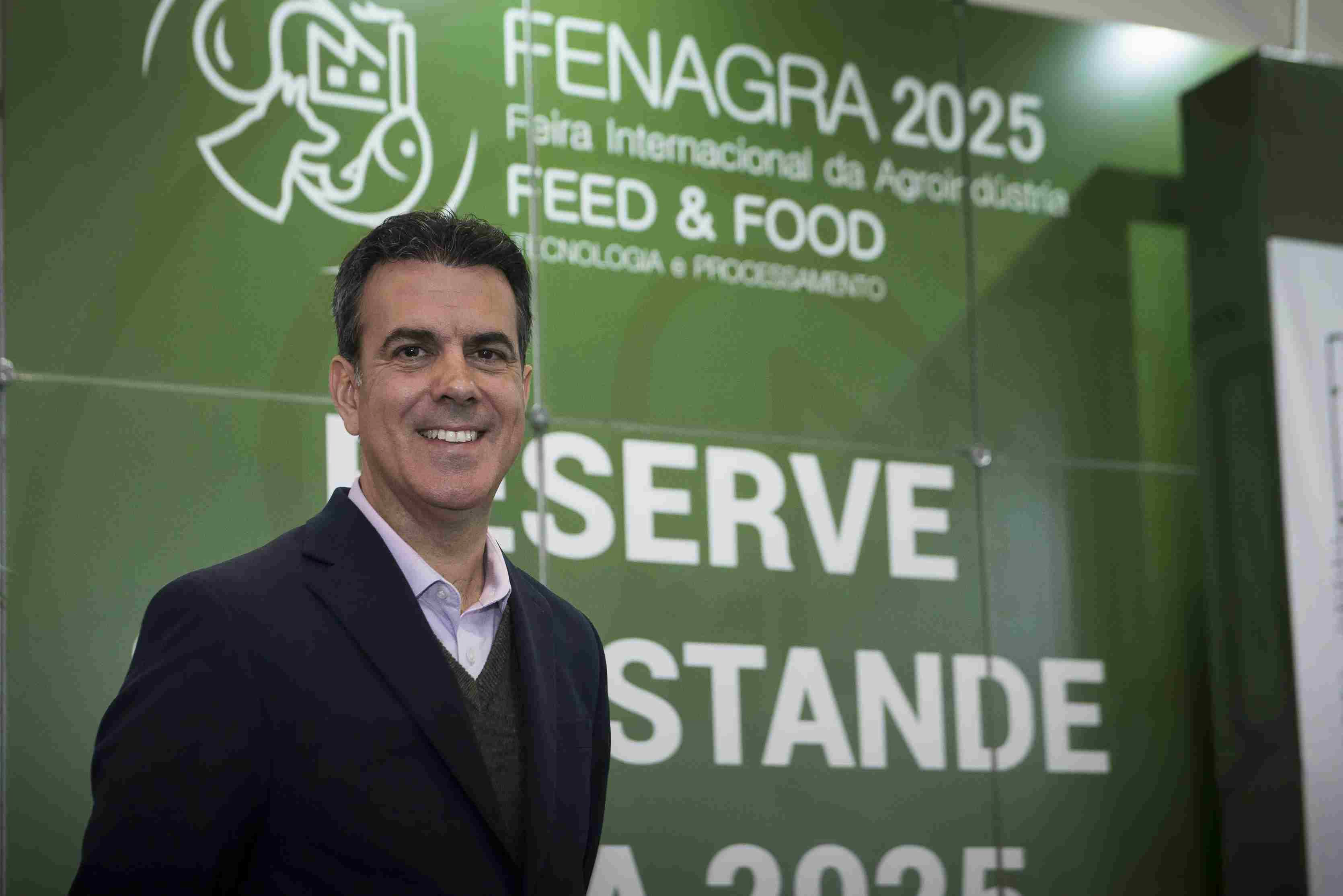 Interviews
Interviews
3+ MIN
08/04/2025
The Interview: Daniel Geraldes, Founder of FENAGRA
How was your professional career until you launched FENAGRA?
FENAGRA had its first edition in 2004, with only 8 stands. At that time, I was only dedicated to the animal recycling market (rendering), and I used to give a workshop about this topic. At the same time, I decided to publish a magazine specialized in the industry.
At first, when I pitched the idea of the fair, everyone believed that this market did not have enough potential to have its own event. However, I insisted, and we held it anyway. When the participants saw the fair, many were interested in having their stand the following year. And so, we arrive in 2025 edition, when we will have 220 stands.
What motivated you to create FENAGRA? What is the main goal of the event?
As I already knew many people in the pet food sector thanks to the magazine, I decided to start with the Expo Pet Food fair and invite the CBNA (Brazilian College of Animal Nutrition) to hold the congress, in parallel to the fair. I believed this would give credibility to both the event and the Congress. The professional Aulus Carcioffi liked the idea and took it to the entity's Board of Directors, which finally approved it.
The fair was held in San Pablo and was very well received. Thus, each year the event gained new exhibitors and increased the number of visitors.
What was the place that the pet food sector occupied at the fair in its beginnings?
Some visitors were from the pet food industry. That's when I met Claudio Mathias (a great friend) and we had the idea of creating an exclusive magazine for pet food. The following year it was launched and received great approval from the entire sector. I immediately realized there was no exclusive magazine and fair for the pet food sector. There was a fair for the pet industry, but not for pet food.
What makes this next edition different from the previous ones?
The event will take place from May 13 to 15, 2025. This will already be the 18th edition (since there was no event for 2 years due to the pandemic), and the event will be held in Anhembi, São Paulo, the largest pavilion in Latin America. This year, the exhibitors belong to different stations of the pet food production chain, so there will be suppliers of raw materials, machines, equipment, laboratories, packaging, and more.
What is the expectation regarding the number of visitors and exhibitors in this edition? What countries will they be mostly from?
We will have 220 exhibitors and an estimated audience of 8,000 people. The visitors are pet food manufacturers, and come from various countries and continents, such as Latin America, the United States, Africa, Asia, and Europe.
What news will attendees at the event find?
Partnering with the CBNA was critical to the event and we have been together from the beginning. Currently, the CBNA is responsible for the largest Animal Nutrition Congress in Latin America, which attracts thousands of people and has simultaneous translation in three languages: English, Spanish, and Portuguese.
Regarding the congress, how many conferences will be given? What will be the main topics of the speakers?
The CBNA has a specific technical committee for pet food, and we will have 11 parallel conferences:
CBNA Pet Food Congress.
CBNA Aqua Feed Congress.
CBNA Poultry Nutrition Congress.
CBNA Swine Nutrition Congress.
CBNA Bovine Nutrition Congress.
SBOG Congress – Vegetable Oils and Fats.
UBRABIO Congress – Biodiesel.
ABISA Southeast Congress.
ABRA Congress – Animal Recycling.
Sincobesp Congress – Animal Recycling.
CBNA Congress of Nutrilogy in Dogs and Cats.
Would you like to tell us any other information?
I would like to take this opportunity to thank All Pet Food for their collaboration, which always supported us, and congratulate them on CIPAL, which is a great success.
For more information about FENAGRA, you can visit: www.fenagra.com.br
By Daniel Geraldes
Source: All Pet Food Magazine
 Manufacturers
Manufacturers
2+ MIN
07/04/2025
Nestlé to Launch New Pet Care Division in South Korea
After more than a decade, Nestlé is moving to establish its own pet care business in South Korea, ending its collaboration with Lotte Wellfood.
Nestlé Purina PetCare will launch on 1 April 2025, and the business rights currently held by the joint venture (JV) will transfer back to Nestlé Korea.
A GlobalPETS market analysis revealed that South Korea has been importing less pet food amid an increase in local suppliers.
Strong Platform
Nestlé launched its JV with long-established South Korean producer Lotte Wellfood in 2014 as Lotte-Nestlé (Korea) to leverage the strength of the Nestlé portfolio and Lotte's local market intelligence and distribution capabilities.
At the time, it was hailed as 'a strong platform to deliver growth and value' by Nestlé Korea's then-CEO Graeme Toft. The JV was not only for the pet care range but also for human food products.
Global Priorities
Fast-forward to 2025, and current Nestlé Korea CEO Thomas Casso says the two partners have agreed to wind down the JV by the end of the first quarter of 2026.
'Nestlé and Lotte made this decision after comprehensively considering various factors, such as overall global priorities, domestic market conditions and the two companies' shared capabilities,' he says. 'Both companies will strive to ensure stable operation and change management until the end of the joint venture.'
Market Challenges
The South Korean pet care market has faced challenges in recent years due to economic slowdown and rising inflation.
Euromonitor's 2024 analysis indicated that consumers were basing their purchases on affordability while cutting back on non-essentials. It also noted a preference for trusted and familiar brands and strong growth in cat food as the country's cat population was growing faster than dogs.
Nestlé Growth
Nestlé reported that its 2024 group sales and net profit had decreased across its vast portfolio. However, its pet care division was delivering growth, especially in the Purina range in North America. Market share gains have been made in Europe, and it has 'reignited growth momentum' in Asia, Oceania and Africa.
The company recently announced a $198 million (€187M) investment in its pet food processing facility in Wisconsin, enabling it to increase wet food production by up to 50%, and a £150 million ($200.5M/€180M) investment in its Purina pet care facility located in Wisbech, UK.
By Steve Randall
Source: GlobalPets
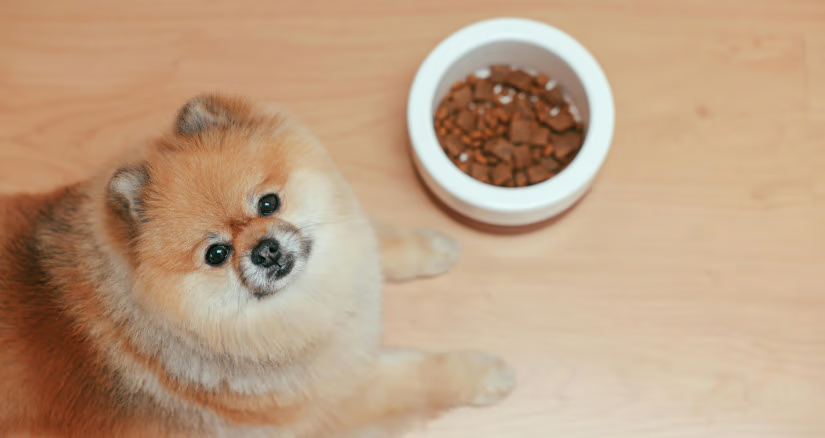 Nutrition
Nutrition
5+ MIN
04/04/2025
Loaf, Kibble, Stew—Oh My! A No-Judgment Guide to Feeding Your Pet
Back to Basics: Kibble
The trusty, crunchy staple. It's the pet food equivalent of a beige cardigan, while not exactly the most exciting thing, it is practical and reliable. Kibble can be extruded or baked. Either way, it's typically brown and round. When selecting kibble for your pet, here are some foods for thought to consider:
Pros: Convenient, like finding a twenty in your old jeans. Kibble has convenience on its side, as well as a variety of meats, flavors, and types of carbohydrates. Kibble has something for everyone in the sense that it has a variety of flavor offerings, can come in specialized diets, and is easy to store away in your pantry for Fido's next feeding.
Cons: Aside from finding one of these crunchy pieces on the floor in the middle of the night, kibble may not be as tasty as other formats (listed below) for those pickier eaters.
Pet Parent Pro-Tip: If your pet looks at their kibble like you look at a salad, try adding a splash of warm water. Instant gravy… sort of. Or try topping with a different format below.
Side note: For those who are new to topping your pet's food, this can be a fun way to add different flavors, try different formats, and increase palatability at mealtime. Watch out for going overboard on toppers, though, as too much can cause an imbalance of nutrients and add too many calories to your pet's daily caloric intake.
Loaf, Chunks, or Stew… So Much to Choose: Wet Food
Wet food: not just pâté for the picky palates. It's the pet food equivalent of a five-star restaurant—if that restaurant served everything in a can. Today's wet food is not limited to a can but comes in various packages and textures, such as chunks in gravy, stews, and loaf/pâté. Before feeling overwhelmed by a sea of cans, here is the skinny (or not so skinny) on those tasty tins:
Pros: Hydrating! Perfect for pets who think water is only for baths. Highly palatable, especially for those picky eaters, as it is packed with high amounts of meat and natural animal fat.
Cons: Some say the smell, while those with larger dogs are thinking pocketbook. Since wet food is meat-forward, the smell can be more pungent than that of kibble. However, as wet food is, well… wet, the calories per volume are lower, meaning a larger dog may need to eat upwards of 10+ cans a day to meet its daily caloric intake.
Pet Parent Pro-Tip: Invest in a good, reusable can lid (and maybe a nose clip). Wet food can be excellent for topping a pet's normal diet for picky eaters if feeding only wet food is not economical. It can also serve as a great method for hiding medicine.
The Lightweight Champ of The Pet Food Aisle: Freeze-Dried
Freeze-dried food is the pet food equivalent of astronaut ice cream—lightweight, convenient, and a bit of a novelty. Freeze-dried foods are gaining popularity, but what do we truly know about these overnight sensations?
Pros: Freeze-dried food is super convenient and easy for on-the-go treats or food. Typically, it is rich in meat and animal protein and tastes great! Freeze-dried is a great option for those seeking a 'minimally processed' or 'gently cooked' alternative; just remember that those descriptors do not have true regulatory definitions.
Cons: Can be somewhat expensive. When comparing cost per pound, freeze-dried food is significantly higher than kibble or wet food. However, when considering the daily feeding amounts, the difference may not be substantial. A little can go a long way; freeze-dried food is calorically dense even if the product may be light—keep this in mind to prevent overfeeding.
Pet Parent Pro-Tip: Store freeze-dried food or treats in an airtight container to prevent them from getting stale.
Something to Chew On: Air-Dried
Air-dried food has a chewy, jerky texture that has a bit more moisture than crunchy kibble, which can enhance its flavor. Think of your pet's favorite jerky treat, but as a complete-and-balanced meal! Before running to the store to stock up, here are a few pros and cons of air-dried products.
Pros: Notably recognized for being highly palatable, especially for dogs. More brands are developing air-dried options, which offer different animal proteins and ingredient options.
Cons: Making jerky requires salt, and air-dried products are no different. If your pet has a medical condition requiring lower sodium, contact the company to determine the sodium level before feeding. Additionally, air-drying processes vary across brands, so texture may differ from one brand to another.
Pet Parent Pro-Tip: Air-dried products can be a bit on the pricier side, but with complete-and-balanced options, using them as a topper could be a fun way to introduce a new format to your pet without breaking the bank.
Living on The Wild Side: Raw Food
Raw food: for the pet parent who dreams of their pet channeling its inner wolf or lion. If you dare to venture into feeding raw, pet food brands now offer complete-and-balanced raw options. But before jumping in, check out some of these considerations.
Pros: For those who wish to feed raw but don't know where to start, pet food brands that have embraced formulating raw pet food now offer complete and balanced options out there—taking the guesswork out of which multivitamin to add to your pet's bowl.
Cons: The risk of bacteria is real, people. And let's not forget the meticulous hygiene required, which may not be ideal for those with compromised immune systems or for families with children (who often like to sample the dog's food, as well).
Pet Parent Pro-Tip: If you're feeding raw, do your research, keep good cleaning products on hand, and maybe wear gloves…. and a hazmat suit.
The Bottom Line
Choosing the right food format is a personal journey, much like finding the perfect pair of socks. Just breathe and remember to consider your pet's activity level, age, and nutritional needs when making your selection. When in doubt, consult your pet food nutritionist friend (me!)—because, after all, your pet probably just wants to eat whatever you're having anyway. Now, go forth and choose wisely!
About the Author
Dr. Stephanie Clark is a board-certified companion animal nutritionist, veterinary nurse and nutrition specialist, a pet owner, and a mother who had a baby during the formula shortage. She has spent the past almost two decades dedicating her career to the welfare of pets, livestock, and wildlife. She currently provides nutritional consultations for veterinary clinics and works in the pet food industry.
By Dr. Stephanie Clark, PhD, CVT, PAS, CFS, Dpl. ACAS, VTS (Nutrition)
Source: BSM Partners
 Nutrition
Nutrition
4+ MIN
01/04/2025
Future Trends in Pet Food: How Innovation Transforms How We Feed Companion Animals
Personalized Pet Nutrition
Personalized pet nutrition reflects the growing trend of pet humanization, where companion animals are seen as unique individuals or fur babies. Advances in data analytics, bioinformatics, biobanking, artificial intelligence (AI), and gut microbiome analysis, are all enabling the design and manufacturing of tailored diets to meet individual pets' specific needs.
DNA Testing and Gut Microbiome Analysis kits are readily available to assess a pet's genetic predisposition to certain health issues, food sensitivities, and digestive health. Using this data, specialized diets can be formulated to align with a pet's biology, and though in its infancy, pet food companies will be offering models where pet parents will be able to receive pet food and a microbiome kit in order to tailor a truly 'PET-sonalized' diet for Fido.
The development of 'PET-sonalized' nutrition combined with data analytics and machine learning language models, will be a game changer and a disruptor to the traditional 'one size fits all,' type of food. Even prescription diets designed to address conditions like obesity, diabetes, allergies, and kidney disease will benefit from these breakthroughs.
The Impact of Functional Foods and Supplements
Functional foods, which provide health benefits beyond basic nutrition, are becoming a major focus in human and companion animal diets driven by consumer interest in holistic health, immunity, and mental well-being. People are increasingly seeking foods and supplements that enhance longevity, mobility, and overall health, not only for themselves but their companion animals as well. Interestingly enough, there are similarities in what people want and need for themselves and for their companion animals regarding wellbeing, namely gut health, joint and mobility health, immune support, longevity, weight control and cognitive health.
Biotic nutrition, a term I coined a few years back (2022) for a presentation, combines the idea of biotics (referring to probiotics, prebiotics, postbiotics, etc.) and the broader focus they have on personalized nutrition to address some of the issues listed above.
Collagen, the 'forgotten' protein, is the most abundant protein in the body. There are many types of collagens (27 or so). In general, it is the primary building block of the body's skin, muscles, bones, tendons and ligaments, and other connective tissues. Though more research is needed, initial reports suggest benefits of collagen being incorporated into diets to support joint health, especially for senior pets or large breeds prone to arthritis, and other health conditions.
There are several other functional ingredients, like MCTs (medium chain triglycerides), polyphenols, botanical extracts (nootropics and adaptogens), natural senolytics, specific prebiotics fibers, and resistant starches, where their discussion to address specific health and wellbeing challenges is beyond the scope of this article but are examples of what is coming up in the future to boost wellbeing.
Technological Innovation in Pet Food Production
Technology continues to play a significant role in revolutionizing how pet food is produced, processed, and delivered. Innovations in manufacturing and food preservation are ensuring better quality, safety, and nutritional value.
Technologies such as freeze-dried, gently steamed, sous vide, cold pressed, high-pressure processing (HPP), air-dried, gently cooked, are alternative processes gaining traction to provide alternative feeding formats that are designed to maintain and preserve nutrient quality in the ingredients comprising the diet. Fresh and refrigerated diets, freshly prepared, and minimally processed meals that require refrigeration are gaining popularity and are perceived to offer better taste and texture than traditional formats.
Technologies such as 3D Printing and Smart packaging and their integration with the Internet of Things (IoT) are coming of age. Sensors to track freshness and consumption in real time, printing of petfood in different custom shapes is not too far in the distance which can be tailored to the pet's dietary needs.
Sustainability, Ethical Practices, and the Rise of Alternative Proteins
Sustainability and ethical production practices are becoming key drivers in the pet food market, reflecting broader environmental and animal welfare concerns. As a way to address these challenges, pet food manufacturers are looking into alternative proteins and other eco-friendly solutions.
Insect based proteins (black soldier fly larvae, mealworms, and crickets) are emerging as nutrient-dense alternative protein sources.
Plant based proteins and ingredients like lentils, peas, quinoa, and soy are finding their way into diets for pets, particularly for dogs, which are omnivores.
Cultivated Meat or lab-grown meat, produced without the need for slaughtering animals, is on the horizon. This technology is touted as an ethical, sustainable way to provide high-quality animal proteins for companion animals.
Pet food companies have used upcycled ingredients for many years, though the terms used then were not as catchy as Upcycling. In other words, adding value to food by-products would otherwise go to waste and be sustainable.
The use of eco-friendly packaging (biodegradable, recyclable, and reusable) plus ethical ingredient sourcing (transparency in sourcing practices) is a priority for many pet food brands with high social responsibility.
Conclusion: A New Era for Pet Nutrition
The future of pet food is shaped by innovation, a deeper understanding of pets' unique nutritional needs and to a degree sustainability. From alternative proteins and personalized diets to functional ingredients and cutting-edge production technologies, the pet food industry is evolving to meet the demands of health-conscious, eco-aware consumers. As our companion animals continue to hold a cherished place in our households, the focus on their nutrition will only intensify, driving further advancements and reshaping how we feed our furry companions.
Ultimately, these trends reflect a broader shift toward providing companion animals with diets and foods that are not only nutritious but sustainable and personalized. In this dynamic landscape, innovation will be the key to ensuring our pets, our companion animals, thrive alongside our human families in a healthier, more sustainable future.
By Juan Gómez-Basauri, Ph.D. - Magellan, LLC
Source: All Pet Food Magazine
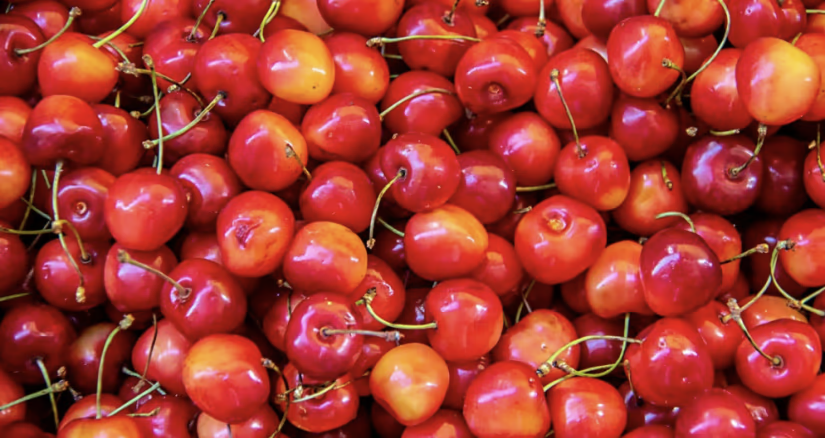 Vegetable Origin
Vegetable Origin
4+ MIN
31/03/2025
Beyond Meat: Harnessing the Power of Phytonutrients for Optimal Health
It's important to recognize that the term "non-essential" refers to the body's ability to synthesize these compounds or function without them. However, their inclusion in the diet may enhance quality of life and may make that little bit of difference in prevention!
In the realm of canine nutrition, the focus has traditionally been on essential nutrients—those compounds that dogs cannot synthesize and must obtain through their diet. However, a growing body of research suggests that non-essential nutrients, particularly phytonutrients found in plant-based ingredients, may offer significant health benefits for our canine companions.
The Silent Power of Plants
Phytonutrients are bioactive compounds produced by plants to protect against environmental challenges like pests and ultraviolet radiation. In canine diets, these compounds are primarily sourced from fruits, vegetables, grains, legumes, nuts, and seeds. Unlike essential nutrients, phytonutrients are not required to sustain life but may contribute to optimal health by supporting various physiological functions.
For example, in the wild, wolves don't just eat meat—they consume the entire prey, including the stomach contents filled with digested plant matter. This means that while your dog may be domesticated, its body still benefits from these plant-based nutrients.
What Do Phytonutrients Do?
Phytonutrients act as nature's free health beneficiary, and often have very fancy names such as carotenoids, polyphenols, flavonoids and phytosterols. They each contribute unique benefits to body weight, metabolism, cardiovascular health, immunity, joint health, cognition, and skin health, with much still left to be discovered.
This table provides a comprehensive overview of various phytonutrients and their impact on canine health.
Source: Tanprasertsuk, J., Aldrich, G., & Shmalberg, J. (2022). Roles of plant-based ingredients and phytonutrients in canine nutrition and health. Journal of Animal Physiology and Animal Nutrition, 106(2), 586–613.
Carotenoids
Carotenoids, such as β-carotene, lutein, and lycopene, found in vegetables like spinach, carrots, and pumpkin, play a significant role in immune function, skin health, and antioxidant protection. Research shows β-carotene enhances immune response in dogs, while lutein supports vision and cognitive function. Lycopene, found in tomatoes, has shown promise in reducing cancer cell proliferation.
Polyphenols
Polyphenols, including flavonoids and phenolic acids, are present in fruits like blueberries, cranberries, and cherries. These compounds have been linked to improved cardiovascular health, reduced oxidative stress post-exercise, and enhanced gut microbiota composition. Green tea polyphenols, for instance, have demonstrated benefits for insulin sensitivity and weight management in dogs (as long as it's decaffeinated).
Phytosterols
Phytosterols, primarily found in oils like wheat germ, flaxseed, and oat oil, contribute to cholesterol regulation and cardiovascular health. Studies suggest that beans rich in phytosterols may help reduce cholesterol levels and triglycerides in dogs. Overall, these plant-based nutrients provide essential health benefits beyond basic macronutrients. Including a variety of vegetables, fruits, and functional foods in a dog's diet can enhance longevity, immune function, and overall well-being.
Potential Health Benefits
There are several areas where phytonutrients may positively impact canine health:
Immune Support: Certain phytonutrients possess anti-inflammatory and antioxidant properties, potentially bolstering the immune system and aiding in disease prevention.
Gastrointestinal Health: Dietary fibers and specific phytonutrients can promote a healthy gut microbiome, enhancing digestion and nutrient absorption.
Cognitive Function: Antioxidant-rich phytonutrients may help mitigate oxidative stress, potentially preserving cognitive function as dogs age.
Cardiovascular Health: Some plant compounds have been linked to improved heart health, possibly by supporting healthy blood lipid levels and vascular function.
Don't Ignore Your Vegetables
Dog's bodies are designed to utilize a variety of nutrients, including those from plant sources. In fact, research suggests adding vegetables to a dog's diet can reduce the risk of cancer and may improve overall longevity. An epidemiological study by Raghavan et al. (2005) published in the Journal of the American Veterinary Medical Association found Scottish Terriers that consumed yellow-orange and green-leafy vegetables at least three times a week had a significantly lower risk of developing bladder cancer.
While essential nutrients are critical for basic survival, non-essential nutrients like phytonutrients can play a pivotal role in promoting overall well-being. Incorporating a diverse array of plant-based ingredients into canine diets not only ensures a broad spectrum of phytonutrient intake but also aligns with holistic approaches to health maintenance.
Non-essential nutrition needs further research to establish more definitive guidelines regarding the types and amounts of phytonutrients beneficial to dog health and longevity. This may be just as important and the original research conducted to define minimum nutrient requirements. While preliminary findings are promising, more controlled studies are necessary to fully understand the mechanisms through which these compounds exert their effects and to identify optimal dietary sources and dosages.
A Balanced Approach to Canine Nutrition
Incorporating plant-based ingredients rich in phytonutrients into canine diets represents a proactive approach to health that goes beyond meeting basic nutritional requirements. As research continues to unveil the multifaceted benefits of these compounds, pet owners and nutritionists are encouraged to consider the potential advantages of a diet that embraces the full spectrum of nutrients—both essential and non-essential—to support the vitality and longevity of our canine companions.
By Dr. Blaire Aldridge, MS, PhD, PAS
Source: BSM Partners
 Cats
Cats
2+ MIN
27/03/2025
Washington Cats Confirmed with HPAI as Investigation into Contaminated Pet Food Continues
Pet owners reported feeding their cats potentially contaminated Wild Coast Raw pet food (previously identified in a prior public health alert). One of the cats was euthanized due to the severity of the illness. The second cat is being treated by a veterinarian.
The Washington Animal Disease Diagnostic Laboratory (WADDL) reported the presumptive positive results of both cats with HPAI on Monday morning, Feb. 24. WSDA received confirmatory results from the National Veterinary Services Laboratory (NVSL) Tuesday, Feb. 25.
The contaminated pet food has been linked to severe illness in cats in Oregon in addition to the reports in Washington mentioned here. For more information and specific lot numbers, visit the Washington State Department of Agriculture recalls and health alerts webpage.
Common clinical signs of HPAI in felines include lethargy, low appetite, fever, hypothermia, progression of illness to pneumonia, progression of illness to neurologic abnormalities and upper respiratory infection. If your pet has consumed this product and has any of these symptoms, please contact your veterinarian immediately. Inform the veterinary clinic before arriving so the veterinary team can prepare to handle the cat in a manner that reduces risk of transmission to veterinary staff, other clients, and other animals.
To date, there have been no documented human cases of HPAI following exposure to an infected cat or contaminated raw pet food products. The currently circulating strain of HPAI is considered low risk to the public, but there is greater risk for those who handle contaminated raw pet food products or who care for infected animals.
People can become infected if the virus enters their eyes, nose, or mouth — such as by handling contaminated pet food or touching contaminated surfaces, especially without thoroughly washing their hands afterward.
Sick animals could be isolated to prevent the possible spread to other animals and people in the home. Caretakers should wear a well-fitting face mask and practice good hand hygiene when caring for infected animals.
Public health monitors all people exposed to animals infected with HPAI through 10 days following their last exposure.
'This is a difficult situation, we love our pets, and it's devastating when they fall ill,' WSDA field veterinarian Dr. Zac Turner said. 'If your cat is showing symptoms, consult a veterinarian as soon as possible.'
The WSDA is continuing to investigate and monitor the situation and urges veterinarians and pet owners to report any additional illnesses potentially linked to the contaminated product. Currently, WSDA does not recommend feeding raw pet food or raw milk to animals.
Source: WSDA
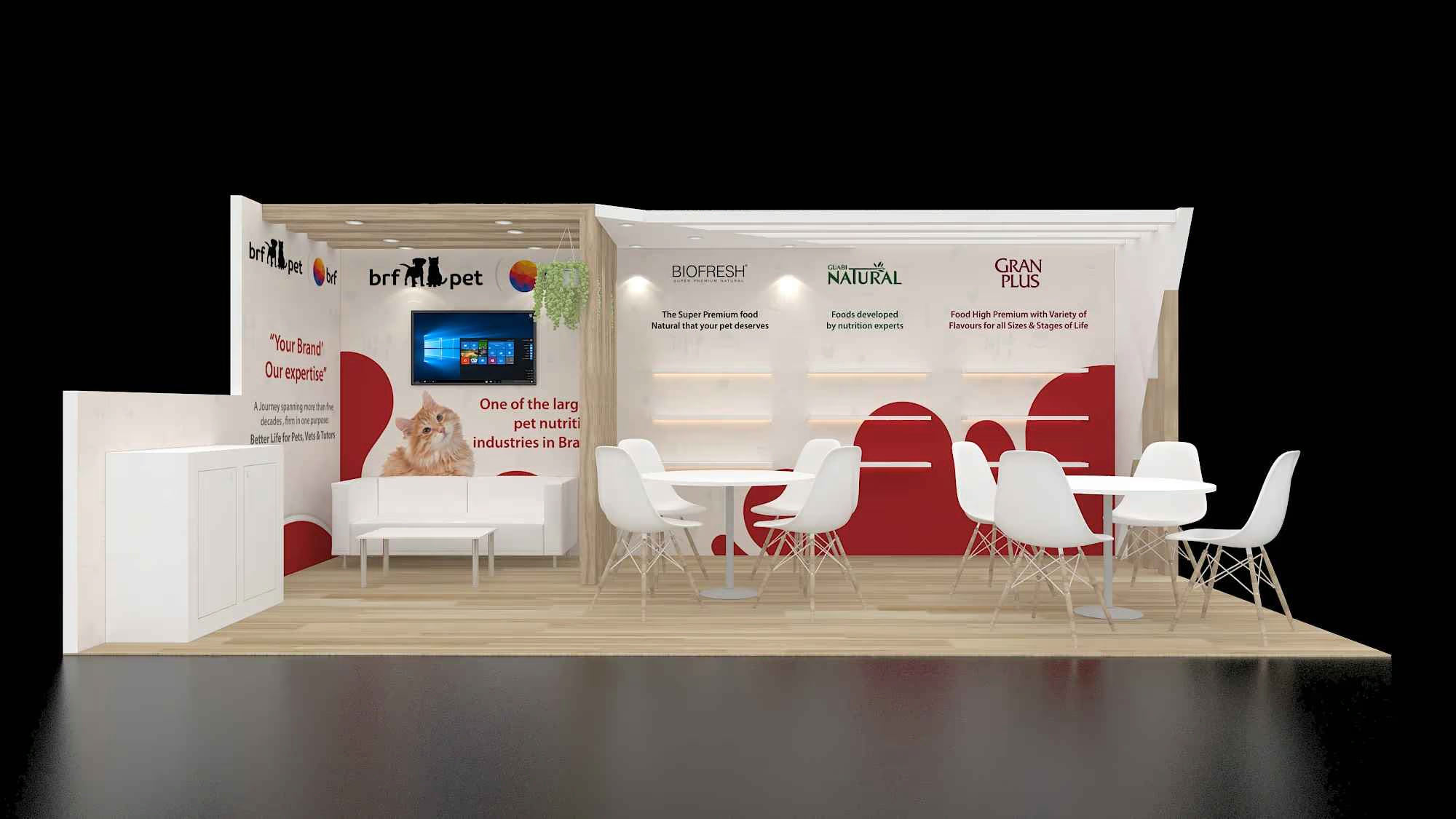 Market Information
Market Information
2+ MIN
26/03/2025
Global Pet, the Leading Pet Industry Event, Welcomes BRF Pet Booth for the First Time in the U.S.
With a presence in 24 countries, the company is focused on its international expansion and will showcase three of its main brands at the event: the Super Premium Natural brands Biofresh and Guabi Natural, and the Premium Special brand GranPlus, including their latest product launches.
Known for bringing innovation to pet products, Global Pet Expo gathers the latest trends and innovations in the market. 'This is one of the most important pet industry events in the world, and participating in it confirms our company's strong appetite for global expansion, which currently accounts for 15% of BRF Pet's business, serving 24 countries across Latin America, Central America, and the Middle East. Our goal is to grow even further. We are focused on diversifying markets and reaching new destinations to expand our global presence,' explains Stanley Andrade, Director of BRF Pet.
BRF Pet's booth will feature its latest product releases, such as the new Biofresh Loin & Pineapple, which, among other benefits, contributes to ideal stools: reduced volume and odor, firm texture, and less attraction for ingestion.
Biofresh, Guabi Natural, and GranPlus, showcased at the BRF Pet booth, are among the brands marketed by the company both domestically and internationally. Biofresh and Guabi Natural (which was the first Super Premium Natural pet food launched in Brazil) are among the brands most recommended by veterinarians. GranPlus is BRF Pet's most representative brand, offering the most diverse pet food portfolio on the market in terms of flavors and textures.
More information is available at: BRF Pet
Source: BRF Pet
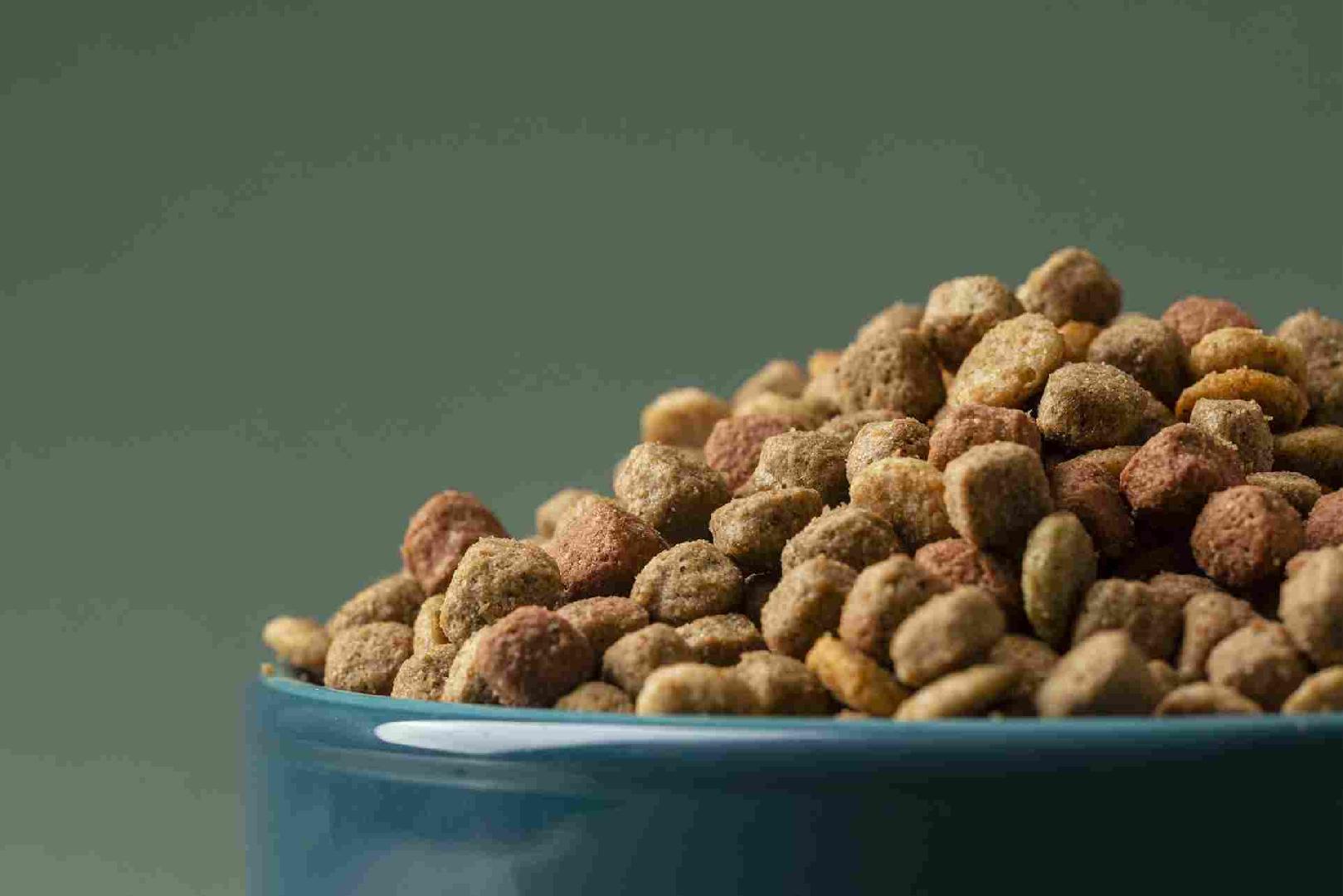 Market Information
Market Information
5+ MIN
25/03/2025
Packaging and Palletizing of Animal Feed and Pet Food: Achieve Efficiency and High Productivity with Statec Binder
Why Automated Packaging and Palletizing are Becoming Increasingly Important
The packaging of animal feed and pet food is not only used for easy handling and storage but is also a key factor for product protection and the productivity of a company. On the one hand, it is essential that the contents of the feed bags are protected from unwanted leakage, i.e. material loss. Automated machines for packaging animal feed and pet food can simplify this process and securely sew or heat-seal bags.
On the other hand, automatic packaging systems offer the advantage that the bags can be delivered in a consistent quality and with a consistent filling quantity. This also means that a large number of bags can be processed in the shortest possible time, which has a positive effect on the company's productivity. At the same time, fully automatic packaging machines require fewer personnel, as the machines can carry out many steps automatically. This reduces the dependency on the availability of employees and also the overall personnel costs of your business.
When it comes to palletizing the filled and sealed bags, automated palletizers offer just as many advantages. Due to the weight of some bags, employees would not be able to place them on the pallets at such a fast pace in the long term. Palletizers also work very precisely and safely. This means that the stacked bags on a pallet are stable and can withstand further transportation.
Fully automatic packaging machines and palletizing systems therefore enable a company to prepare its products for onward transport or delivery more quickly and safely. With the growing demand for high-quality pet food as well as for animal feed, manufacturers are under increasing pressure to optimize their processes. Automated packaging and palletizing solutions are essential as they ensure efficiency, accuracy and reliability throughout the supply chain.
The Role of STATEC BINDER in the Animal Feed and Pet Food Industry
STATEC BINDER has specialized in the development and manufacture of state-of-the-art and automatic packaging machines and palletizing systems for decades. With a clear focus on quality and innovation, the company offers individual solutions for the specific needs of its customers. Particularly in the animal feed and pet food industry, STATEC BINDER has developed a deep understanding of the industry's requirements and develops numerous solutions worldwide that are individually tailored to the requirements of animal feed manufacturers.
STATEC BINDER's most important products and services include:
High-quality packaging machines: Suitable for different types of bags such as paper, plastic or woven bags. STATEC BINDER also offers machines for switching from manual filling to an automated packaging solution. Whether semi-automatic packaging machines, fully automatic systems or big bag filling stations for filling large quantities —the company finds the most suitable solution for every customer.
Automated palletizing systems: For the precise stacking of bags on pallets. There are different types and stacking methods - depending on your wishes and plant requirements. The product portfolio includes high-level palletizers, robot palletizers and portal palletizers.
Individual developments: In order to meet the specific requirements of customers worldwide, STATEC BINDER develops a top solution even for the most difficult requirements.
Comprehensive customer support: From planning and commissioning to maintenance and training. The specialist is at your side not only during the purchasing process, but also after your system has been commissioned. With special service packages, your individual support requirements can be optimally addressed. In this way, STATEC BINDER ensures that you can enjoy your system for a lifetime.
Perfect Packaging Machines for the Animal Feed and Pet Food Industry
STATEC BINDER packaging machines are designed for quality and flexibility. They can efficiently package pet food, animal feed and feed additives in a wide variety of shapes and consistencies. Whether filling pre-made open-mouth bags in different capacities or a machine that forms and fills the bags from a film roll —the perfect solution depends on your specific product.
Advantages of STATEC BINDER Packaging Systems:
High flexibility: Suitable for different bag materials and sizes.
Precise dosing: Ensures that each package contains the exact amount of feed. STATEC BINDER packaging machines can easily process a filling weight of 5 - 50 kg.
Energy efficiency and productivity: Optimized processes reduce energy consumption compared to conventional packaging machines. The machines are available in different versions and for different capacities to perfectly match your production expectations.
Durability: Robust machines and high-quality components from Austria ensure minimal maintenance requirements.
Automated Palletizing Systems for Safe and Fast Onward Transport
An efficient palletizing process is essential for the safe storage and transport of packaged animal feed and pet food. STATEC BINDER offers both robotic and conventional palletizing systems for this purpose. A prime example is the PALLETIZER PRINCIPAL-H, a versatile and powerful system that can be configured for different applications.
Main features of the STATEC BINDER palletizing systems:
High stacking quality: For stable and space-saving pallets.
Speed: Up to 2,500 bags per hour can be processed.
Intelligent control: Simple operation via touchscreens and the option of integration into existing systems.
Modular design: Depending on customer requirements, STATEC BINDER also offers complete solutions with, for example, a stretch hooder or truck loader system.
Safety and Sustainability
Safety, hygiene, and sustainability play an important role in the animal feed industry. STATEC BINDER machines are designed to be easy to clean and meet the highest safety standards. High-quality components are used in the machines, and it is also possible to develop the packaging machines in stainless steel.
Global Presence and Customer Proximity
STATEC BINDER is proud of its global presence. With installations in over 85 countries and a global network of sales partners and service teams, the company ensures that customers receive support anytime, anywhere. This commitment to customer proximity and service is a key to STATEC BINDER's success and one reason why the company is chosen by many as a preferred partner in the feed industry.
Conclusion
The packaging and palletizing of animal feed and pet food is a demanding task that requires state-of-the-art technology and comprehensive know-how. STATEC BINDER offers these innovative solutions, which focus on efficiency, reliability and high productivity. With a broad product portfolio for a wide range of requirements, individual customization options and a strong focus on customer satisfaction, STATEC BINDER is the ideal partner for companies in the animal feed and pet food industry that want to optimize their processes and increase their competitiveness.
By STATEC BINDER
Source: All Pet Food Magazine
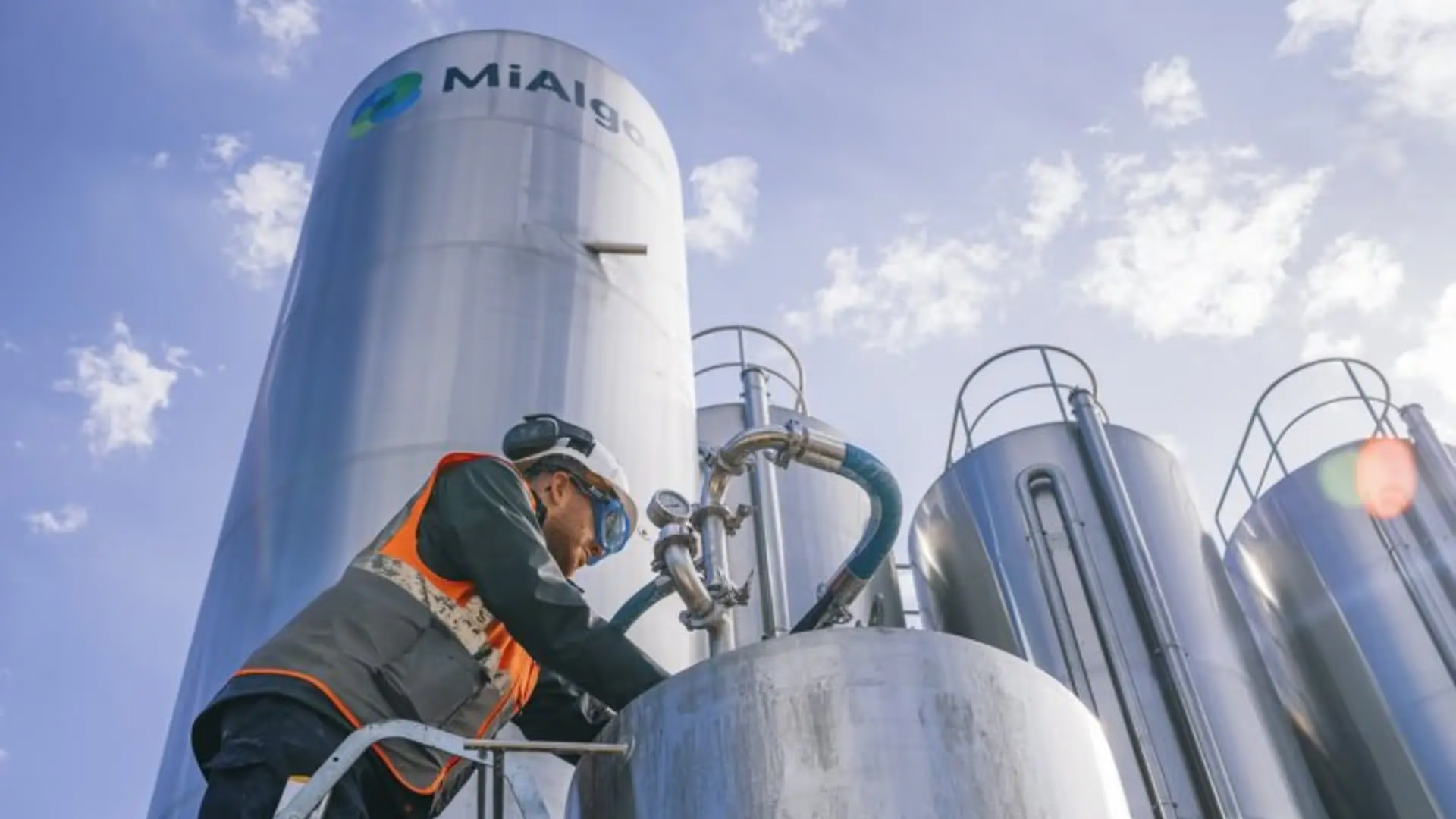 Vegetable Origin
Vegetable Origin
2+ MIN
24/03/2025
MiAlgae Plans to Expand Abroad with Pet Food in its Sights
MiAlgae, a company looking to update the omega-3 additive manufacturing industry, is considering expanding to the US and Australia after it builds a new facility in Scotland this summer.
The Edinburgh-based company is slated to open a new plant in Scotland's Central Belt. Company officials say the new facility will more than quadruple its production capacity as it prepares to scale its tech.
MiAlgae is part of Mars Petcare's Next Generation Pet Food Program, a partnership that aims to drive sustainability in pet startups. MiAlgae was also a finalist for the 2024 Earthshot Prize, an environmental impact award given out by the UK-based non-profit of the same name.
Omega-3 fatty acids are commonly added to pet foods, as they support brain and coat health. The products are often derived from fish oil, but with an eye toward sustainability, MiAlgae hopes to change that.
What's the Plan?
It's unclear when the product will be commercially available, but Jo Partridge, MiAlgae's Operations Director, says the company's omega-3 products are undergoing tests by pet food makers.
GlobalPETS learned that MiAlgae is already in talks with pet food manufacturers. 'Whilst we're not yet at the stage of announcing specific contracts, we're confident about the role our product will play in the pet food market,' says Partridge.
She also states that MiAlgae wants to become a global partner for companies using omega-3s, with particular interest in the US and Australia.
'Both regions offer access to byproduct streams from local industries and strong potential markets for sustainable pet food solutions,' Partridge says.
'By positioning production near feedstock sources, we aim to further reduce the carbon footprint of our process while maximizing efficiency. We already have existing feedstock partners in these areas, which strengthens the feasibility of expansion.'
Cutting out the 'Middle Fish'
Currently, a large amount of omega-3s produced come from farmed or wild-caught fish. MiAlgae markets itself as a sustainable solution to demand for the nutrient by instead collecting omega-3s directly from algae.
It uses industry byproducts to feed its algae, which produce the necessary acids. 'Fish do not produce Omega-3s themselves; they acquire them by consuming algae,' the company's website explains. 'MiAlgae's innovative model bypasses the 'middle fish'' to reduce dependence on wild fishing.
Source: GlobalPets
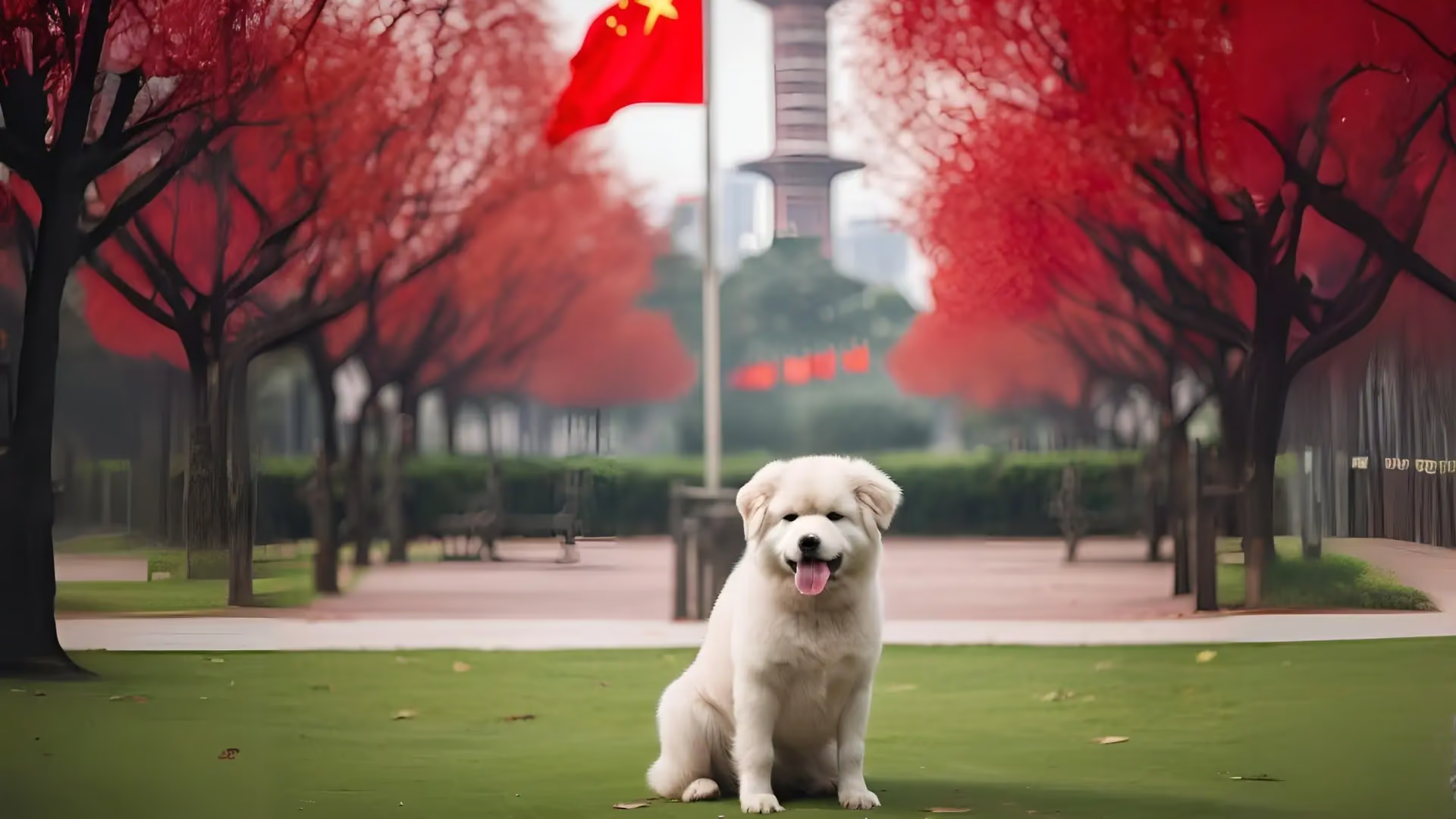 Market Information
Market Information
2+ MIN
21/03/2025
Millennials and Gen-Z Fuel China Pet Industry Boom
According to a recent report by data analysis platform Statista, China's pet economy is projected to reach CNY811.4 billion ($114B/€103B) by 2025.
This indicates that the industry is experiencing rapid growth, as the data shows a notable jump from CNY592.8 billion ($82.4B/€75.9B) in 2023. In the past 5 years, the urban pet population in China has grown by approximately 50%.
China's aging population and increasing number of single-person households have become major drivers of the pet economy. In 2023, single-person households accounted for 16.77% of all Chinese homes. An estimated 22% of households in China now own pets, with urban households alone home to 69.8 million cats and 51.75 million dogs.
Younger Pet Parents
Millennials and Gen-Z, many of whom were raised under China's One-Child Policy, are choosing to raise pets instead of children.
A report by Xiaohongshu, a Chinese alternative to the social media platform Instagram, found that around 56% of younger pet owners, particularly those under 29, adjust their lifestyles and spending habits to accommodate their pets.
The report stated that young people's concept of raising their pets has shifted to treating them like family members, even popularizing the idea of treating their pets as well as themselves.
According to the report's conclusions, around 88% said their spending on pets had significantly increased or remained the same as the previous year, as young people are willing to spend generously, hoping to provide new experiences for their pets.
Domestic Pet Food Market
The latest report from market research firm Goldman Sachs shows that pet food has emerged as one of China's fastest-growing consumer sectors, with a compound annual growth rate (CAGR) of 16% from 2017 to 2023 – outpacing the 5% growth in overall retail sales. In 2023, the pet food market reached CNY51 billion ($8.3B/€7.2B).
The market is projected to grow at an 8% CAGR through 2030, reaching CNY63 billion ($8.8B/€8B). This growth will be driven by a 5% increase in household pets, a 2% rise in consumption per pet and a 1% annual increase in average selling prices.
China's pet food market is also witnessing a shift toward local brands. Over 70% of pet food sales occur online, and domestic players have increasingly gained market share over global brands.
Shenzhen: A Pet Industry Hub
According to information from local authorities, Shenzhen, a southeastern Chinese city where the average age of residents is only 32.5, currently has over 84,000 pet-related enterprises, up sixfold from 12,000 in 2020.
Over the last few months, the local government has increased its efforts in this area, introducing pet-friendly bus lines, creating China's first pet lounge at Shenzhen Bao'an International Airport and encouraging the development of new pet-friendly parks and commercial centers.
Source: GlobalPets
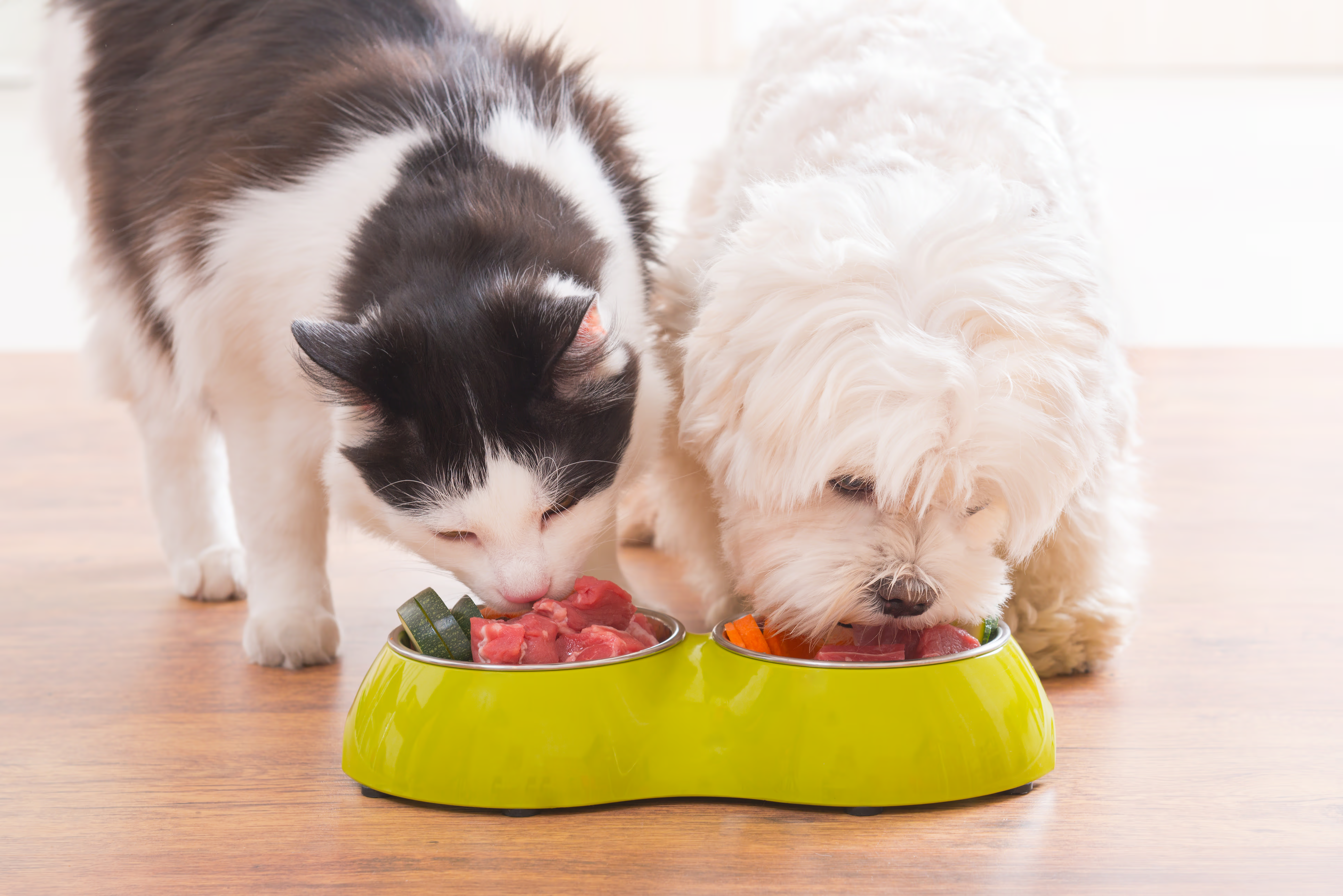 Nutrition
Nutrition
4+ MIN
20/03/2025
Harnessing the Power of Postbiotics for Pets
This has led to the growing interest in prebiotics, probiotics, and postbiotics. While probiotics (live bacteria) and prebiotics (fiber-based food for good bacteria) are well known, postbiotics are emerging as a powerful and stable alternative in pet nutrition.
Pet food manufacturers can harness the benefits of postbiotics to improve pet health, enhance product stability, and meet the growing demand for functional pet foods. This article explores what postbiotics are, their benefits, and how they can be incorporated into pet food formulations.
What are Postbiotics?
Postbiotics are bioactive compounds produced during the fermentation of beneficial bacteria. Unlike probiotics, which contain live bacteria, postbiotics are made of inactivated microorganisms and their metabolic byproducts. This means they do not require refrigeration, are more stable in pet food, and eliminate the risk of bacterial overgrowth.
Postbiotics can include:
Short-chain fatty acids (SCFAs), which support gut health
Biologically active small-size peptides
Enzymes that aid digestion
Exopolysaccharides
Plasmalogen
Vitamins and amino acids that contribute to overall well-being
Because postbiotics do not contain live bacteria, they are a safe option for immunocompromised pets, young animals, and those with sensitive digestive systems.
Benefits of Postbiotics in Pet Food
1. Supporting gut health
A healthy gut microbiome is essential for proper digestion, nutrient absorption, and immune function. Postbiotics, particularly SCFAs like butyrate and acetate, nourish intestinal cells and maintain gut barrier integrity. This helps prevent diarrhea, bloating, and other digestive issues.
2. Enhancing immune support
At least 70% of a pet's immune system resides in the gut. Postbiotics help regulate immune responses by reducing inflammation and stimulating protective immune cells. This can improve a pet's ability to fight off infections and reduce allergic reactions.
3. Anti-inflammatory and antioxidant properties
Chronic inflammation contributes to many pet diseases, including arthritis, skin disorders, and gastrointestinal issues. Postbiotics contain bioactive compounds that modulate inflammatory pathways and reduce oxidative stress, promoting long-term health.
4. Improved skin and coat health
A well-balanced gut microbiome influences skin and coat health. Postbiotics help reduce inflammation linked to skin conditions such as allergies and dermatitis. Additionally, their contribution to nutrient absorption ensures pets receive essential vitamins and fatty acids for a shiny coat.
5. Stress and anxiety management
The gut-brain axis links digestive health to mental well-being. Some postbiotics help produce neurotransmitters like serotonin, which regulate mood and stress responses. This can be beneficial for pets prone to anxiety, especially in stressful situations like travel or separation.
6. Increased shelf stability
Unlike probiotics, postbiotics do not require special handling, refrigeration, or live bacterial viability. This makes them ideal for pet food formulations, ensuring consistent health benefits throughout a product's shelf life.
How to Choose the Right Postbiotic for Pet Food
1. Understanding the source
Postbiotics should be derived from well-characterized probiotic strains. The bacterial source should be known and documented to ensure consistency and efficacy.
2. Evaluating composition
Different postbiotics contain different bioactive compounds. Selecting the right composition based on specific health goals (gut health, immune support, skin health) is crucial for formulating targeted pet food products.
3. Safety and regulatory compliance
Pet food manufacturers should choose postbiotics that meet safety and regulatory standards. Postbiotics should undergo rigorous testing to confirm their benefits and absence of harmful substances.
4. Compatibility with other ingredients
Since postbiotics are stable, they can be easily incorporated into dry and wet pet foods. However, manufacturers should ensure they do not interact negatively with other functional ingredients.
Incorporating Postbiotics into Pet Food
1. Functional pet treats
Postbiotic-infused treats can serve as an easy way for pet owners to support their pet's gut health. These can include biscuits, soft chews, or freeze-dried treats.
2. Dry and wet pet food
Postbiotics can be added to kibble or canned pet food, providing long-lasting health benefits without affecting taste or texture.
3. Supplements
Postbiotics are available in powder or capsule form, allowing pet owners to add them to meals as needed. This offers flexibility in dosing based on pet needs.
Conclusion
Postbiotics are a game-changer in pet nutrition, offering stability, safety, and scientifically backed health benefits. By incorporating postbiotics into pet food, manufacturers can enhance gut health, immune function, and overall well-being in pets. As demand for functional pet foods grows, postbiotics present a valuable opportunity for innovation in the industry.
Pet food manufacturers who embrace postbiotics will not only provide superior nutrition but also meet the evolving needs of health-conscious pet owners. With the right formulation, postbiotics can redefine pet food and promote a healthier future for companion animals.
By Yunior Acosta Aragón
Source: B2B-Feed s.r.o.
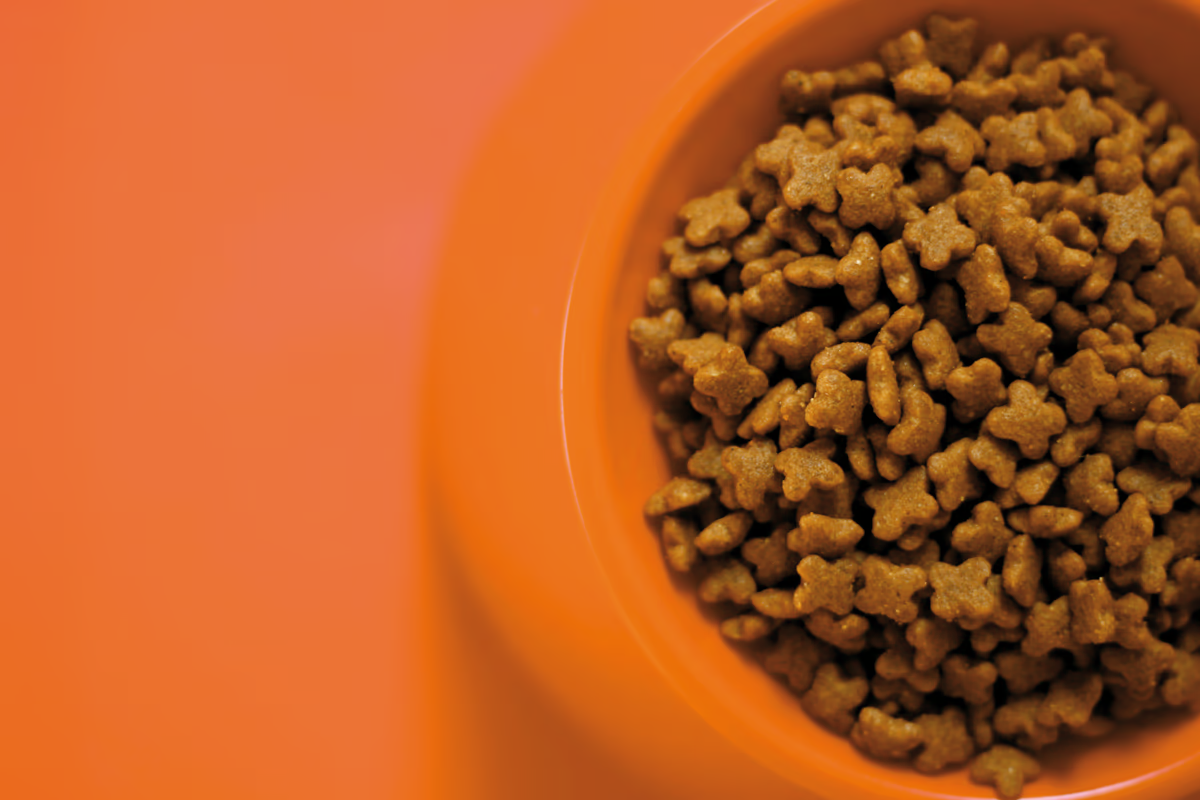 Market Information
Market Information
5+ MIN
18/03/2025
4 Booming Trends in the Pet Food Industry by 2025
With the increase in pets per capita, new needs, trends, and demands also arise. Such is the growth of the industry that the entire pet industry is expected to reach $300 billion by 20301. Let's find out, then, what 2025 will bring us and the booming trends around the pet food industry for this year.
The Booming Trends in the Pet Food Industry for 2025
1. Natural supplements
According to the latest Grand View Research2 survey, the pet supplements category is estimated to reach $1.05 billion by 2027. With the increasing pet humanization, pet owners are increasingly studying how to feed them with a healthy diet, for example, what they have dabbled in purchasing supplements. The most common are different types of vitamins, fish oil for cats, probiotics, and prebiotics. For instance, searches for "probiotic" terms on the Internet increased by nearly 90%, and this type of supplement directly impacts the digestive system, something that has also increased in importance for consumers, both for the care of one's own body and that of our pets. Probiotics can help reduce digestive problems and reduce food allergies.
2. Technology in highly personalized foods
Consumers are increasingly interested in foods that not only nourish their pets but also contribute to their overall well-being. Technology is increasingly at the service of creating highly functional foods, both for its target customers and specific pets and breeds. Some of the most consumed options are those designed to strengthen the immune system or relieve joint problems. The market now offers meal plans based on DNA analysis or virtual nutritional consultations, for instance. This, known as precision wellness, can already be seen reflected in new product proposals, such as cat litter brands that change color depending on the pH level of the animal's urine (which can indicate health or any imbalance).
3. E-commerce & direct sales (DTC)
As with supermarkets, people choose an e-commerce or online store for different reasons such as convenience of delivery, prices, benefits, and more. Online purchasing is increasingly important in the pet food industry, and the same is true for the whole pet industry.
Within this sector, we can highlight the subscription model, a way to build customer loyalty by giving them benefits and personalized attention based on their purchase history, which makes it easier to build a brand and loyal clientele. Pet owners are increasingly seeking greater personalization, not only in what they give to their animals but also in the attention they receive in this regard: they seek to buy in spaces where they can be advised and recommended according to the conditions and needs of their pet, something you can't get in other types of businesses, such as in large market chains.
4. Natural over plant-based products
While there are many consumers, especially younger ones, who continue to look for foods with plant proteins or alternatives to reduce or avoid meat consumption, there are many other consumers who are not so in favor of plant-based products. But now, many people are no longer in favor of alternative protein products since they have discovered that several of them were processed. And, indeed, being of plant origin does not imply that something is natural. Sometimes, there are products of plant origin that are, in turn, ultra-processed.
For its part, the sector that has grown in demand is that of natural foods, with organic raw materials and without artificial additives. Awareness about the environmental impact and pet health has led to an increase in demand for this type of food. Consumer choices indicate that the sustainability of the process by which pet food is obtained is non-negotiable if they are going to receive a poor quality or ultra-processed product for their 4-legged companions.
Finally, it should be noted that within the natural and sustainable aspects of the pet food industry, the packaging in which it is sold and transported is also considered. More and more companies are betting on the choice or even the development of new raw materials with which to make packaging, and today, we find everything from recyclable or reusable options to some made with already recycled or biodegradable plastic, and this is, without a doubt, a trend that will continue to increase, both because of the care of the environment and because it is an important factor in purchasing decisions.
Bonus: Innovation at the Service of New Product Categories
Pets have become so important in people's lives that, no matter how much it costs or what it costs to get one: if their owner sees or discovers a toy or product that they think can do them good or have fun, they will look for it until they find it! This trend of pet humanization has resulted in a whole new market of new products, which opens the possibilities of the industry even more.
Hand in hand with technological research, biotechnology, and innovation, today we can find startups3 on the market that offer ice cream specially made for dogs (and they are even found on the shelves of supermarkets like Whole Foods!). We can already see new subcategories in the pet food, toys, beds, straps, hygiene, and aesthetics sectors, such as pet wipes, or specific toothpaste for feline dental health, and even digitized sandboxes with auto-cleaning and remote control.
Conclusion
Looking ahead to 2025, we will see that technology, science, and innovation will come together to offer increasingly specific, more innovative, and tempting products. In an industry that faces more demanding consumers than before but also more predisposed to investment, we must take advantage of the moment, not only to create new business units or categories but also, above all, to improve care, and the quality of what we offer for pets: a brand's best tool to win loyal consumers.
By All Pet Food
Source: All Pet Food Magazine
References
1. https://www.bloomberg.com/company/press/global-pet-industry-to-grow-to-500-billion-by-2030-bloomberg-intelligence-finds/
2. https://www.prnewswire.com/news-releases/pet-supplements-market-size-worth-1-05-billion-by-2027--cagr-6-4-grand-view-research-inc-301035668.html
3. https://www.thebearandtherat.com
 Dogs
Dogs
5+ MIN
17/03/2025
Can Feeding Your Dog Once Daily Benefit their Health?
Although their guidance isn't set in stone, veterinarians typically recommend feeding the average adult dog twice daily. People also often feed their dogs twice per day to mimic their own feeding times for breakfast and dinner — after all, dogs are part of the family!
However, new research suggests there could be health, cognitive function, and longevity benefits to feeding a dog once a day. Although the large-scale project analyzing the findings is only in its preliminary stages, and changing your dog's feeding schedule based solely on the initial research would be premature, it provides compelling food for thought.
The Research is Part of the Large-Scale Dog Aging Project
Dr. Emily Bray, assistant professor of human-animal interaction at the University of Arizona College of Veterinary Medicine, is a researcher with the Dog Aging Project and co-author of the feeding frequency paper. She explains that the project is a long-term community science initiative involving dog owners, expert researchers, and veterinarians across the U.S.
This world-leading health study aims to understand how genetics, environmental factors, and lifestyle influence canine health and aging. 'We're trying to figure out not just what leads to longer lives for dogs, but what leads to healthier lives,' Dr. Bray says.
The initial cross-sectional data collected from the detailed surveys of over 24,000 owners showed that most feed their dogs twice a day, some free feed, topping up the bowl whenever it's empty, and the smallest number (8%) feed them once daily. Early research analysis indicates feeding frequency could influence dog health and longevity. Dogs on the once-a-day feeding regime are associated with having lower odds of developing cognitive dysfunction and multiple diseases.
Why Once-Daily Feeding Could Be Beneficial
Intermittent fasting is an increasingly popular dietary trend in humans, and studies support that this type of time-restricted feeding schedule in laboratory rodents can offer health and cognitive function benefits.
Dr. Bray explains that while the data in the study suggests there could be similar benefits for dogs in real-life situations, the link is currently only correlational (statistical) and not causal. Because the extent and nature of the link between feeding frequency and dog health has not been identified, she says that any theorizing about why once-daily feeding could be beneficial is conjecture.
While we might not understand why, the study indicates that dogs fed once a day are less likely to experience gastrointestinal issues, dental disease, orthopedic conditions, kidney or urinary problems, and liver or pancreatic disorders.
Canine obesity is a major problem in the US, with the Association for Pet Obesity Prevention estimating that more than half of all pet dogs in the country are overweight or obese. Weight issues can contribute to or cause various health issues, some of which can affect dogs' lifespans.
'It could be that feeding frequency is affecting caloric intake, weight, and obesity levels,' Dr. Bray says. 'If that is the case, then we expect this to impact things like orthopedics and cardiovascular health.' It's also possible that allowing the gastrointestinal system extra time to rest and repair could be beneficial. However, Dr. Bray points out that intermittent fasting and caloric restriction can be hard to disentangle from one another. This means it's unclear if one or both aspects offer benefits.
The data also suggests that cutting back your dog's feeding schedule could mean they will be less likely to develop canine cognitive dysfunction in their senior years, or it may take longer to develop. 'We see this seemingly protective effect, where dogs that are fed less frequently are having better cognitive outcomes,' Dr. Bray says.
Does This Mean I Should Feed My Dog Once a Day?
Dr. Bray and her co-authors don't recommend changing your dog's feeding schedule based solely on the research results. However, that's not to say you shouldn't feed your dog once a day.
'The logic behind the genesis of the guidelines for eating twice a day is murky,' Dr. Bray says. Because there is little scientific evidence to support these guidelines, sometimes it could be appropriate to feed less frequently.
Your dog's age, size, health, and activity levels can all influence how often you feed them. 'It's going to be an individualized decision, and owners should always consult with their veterinarian before making major changes,' Dr. Bray says.
However, there are times when feeding once a day can be problematic. Examples of when a more frequent feeding schedule is typically recommended for dogs include:
To aid digestion for the delicate stomachs of puppies or senior dogs.
When pills need to be taken multiple times a day with food.
To reduce risks associated with certain health conditions, such as bloat, canine diabetes, and bilious vomiting syndrome.
To maintain the energy levels of high-activity sporting or working dogs.
Sometimes, greedy dogs on weight loss plans will cope with diet restrictions better when fed multiple small meals during the day rather than one larger one.
To avoid the risk of life-threatening refeeding syndrome when providing nutrition to an emaciated dog.
Some dogs are more settled and happy being fed two smaller meals daily than one large one.
Consider Signing Your Dog Up to Help Inform Ongoing Research
Dr. Bray explains that the researchers revamped some survey questions to get more details following the first study. This addresses some of the limitations and could help identify the causal links between feeding frequency and health and longevity in dogs. 'They're in the pilot stage right now, so it's going out to a subset of the participants,' she says.
Although only 8% of the original cross-section of pet owners fed their dogs once daily, given the large quantity of surveys completed, it's still a decent sample size. However, as more dog owners sign up for the project and the powerful longitudinal data grows, this will help better inform the research. Dr. Bray says there are also plans to examine how the type of diet impacts health outcomes.
If you're interested in contributing, the project welcomes enrollment of new dogs of any breed, age, and health status. You just need to be US-based and have a good estimate of your dog's age. 'You nominate your dog, and once a year, fill out a Health and Life Experience Survey (HLES) that is the project's backbone,' Dr. Bray says.
'Sometimes I think people are confused because it's called the Dog Aging Project,' Dr. Bray says. 'They think maybe their dog has to be older, but, in fact, it's actually better to enroll your dog younger. That means we have more years to follow them and see what's happening.'
By Gemma Johnstone
Source: American Kennel Club
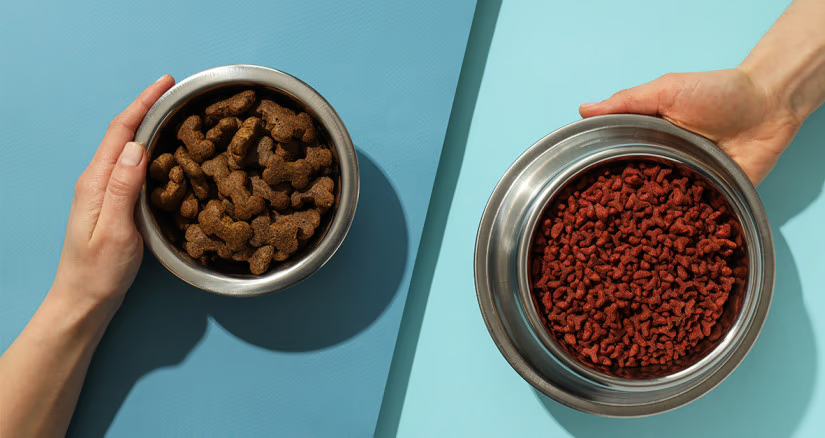 Palatants
Palatants
7+ MIN
12/03/2025
The Palatability Puzzle: New Innovations Unlocking Pet Preferences
Sensory analysis has long been integral to the human food industry. However, its application in pet food is increasingly recognized as critical in ensuring product quality, palatability, and consumer satisfaction.1
Palatability directly influences pets' dietary intake to meet their nutritional needs. For pet owners, knowing their pets enjoy their meals brings emotional satisfaction and builds loyalty to a particular brand. As the pet food industry grows and evolves, leveraging sensory analysis strategically is vital for fostering innovation and meeting the increasing expectations of discerning pet owners.
Expert vs. Consumer Evaluations: Understanding the Basics
There are two main ways to evaluate a food's taste and appeal: expert evaluations and consumer feedback. Expert evaluations use trained tasters who carefully analyze and describe a food's qualities. They may compare samples to find subtle differences or describe in detail what makes each unique. These tests are used for a variety of purposes, from marketing research to developing new products or quality control.1; 2 On the other hand, consumer feedback involves everyday people who use the product. Their feedback is based on their perception and assessment of a food product.
Palatability Testing: Key Methodologies
With pet food, we can easily perform expert analyses in the form of palatability tests to determine pets' preferences. Palatability refers to how enjoyable an animal finds the taste of its food, which is determined by sensory qualities like taste, flavor, and texture.2 Palatability tests play a key role in developing new pet foods or improving old ones, and they are often a crucial factor in determining customer repurchase rates. Ultimately, palatability can make or break a brand.
The palatability of pet foods, at the most basic level, is measured with two different methodologies:
One-Bowl Test: Measures the acceptability of a food by analyzing how much of it is consumed. This method is particularly well-suited for in-home testing environments commonly referred to as IHUTs, or in-home usage tests.
Two-Bowl Test: Evaluates preference by offering two food options simultaneously to measure the first choice, total consumption, and intake ratio between the two foods. This method is often used in controlled environments with kennel or laboratory animals, although variations can be adapted for in-home testing.1-3
Innovative Approaches to Palatability Testing
While these two approaches have been used widely in the past, there are a few new methodologies that allow researchers to gather more in-depth insights into pet food palatability:
Olfactometry
Combining olfactory evaluation with traditional palatability methodologies enhances understanding by isolating and analyzing the critical role of aroma in pet food preferences. Tools like olfactometers and false-bottom bowls help isolate scents, enabling the creation of highly appealing products that enhance both attraction and sustained palatability.4-7
Behavior Evaluation
Integrating pet behavior evaluation with traditional palatability testing improves understanding by linking observable behaviors to food consumption to assess emotional responses to food. Advanced systems, such as automated feeding stations, track detailed metrics like feeding duration, weight consumed, and eating styles, providing deeper insights into individual preferences and consumption patterns.8
Physiological Evaluation
Combining pet physiological evaluation with traditional palatability testing can reveal how physiological responses, such as changes in body temperature and heart rate variability (HRV), correlate with emotional reactions to food. Techniques like infrared thermography and heart rate monitoring provide non-invasive methods to measure responses to palatable stimuli, such as increased eye surface temperature or positive HRV changes.8
Cognitive Evaluation
The Conditioned Place Approach Protocol (CPAP) uses associative learning to reveal food preferences and provides stable results less influenced by prior feeding or satiety. While it complements traditional methods like the two-bowl test, its time requirements and training challenges call for careful integration into palatability studies.3; 9
The Role of Human Sensory Panels in Pet Food Development
While palatability tests utilizing pets provide valuable insights into food preferences through observable behaviors like consumption patterns and first-choice selection, these methods have inherent limitations because pets cannot verbalize their experiences or preferences.3 As a result, researchers must rely on indirect measures, such as food intake, body language, or physiological responses, which may not fully capture the complexity of sensory perception or emotional satisfaction. This lack of direct feedback makes it challenging to understand which specific factors drive acceptance or rejection, highlighting the need for human sensory analysis of pet foods to bridge this communication gap.
Human sensory analysis can provide significant insights in the development and assessment of pet food, particularly in the early stages of product testing. Expert human sensory panels evaluate pet food's appearance, aroma, texture, and flavor, describing these attributes with precision using a well-defined lexicon. For instance, attributes such as "barnyard," "brothy," "toasted," and "oxidized oil" are used to characterize aroma and flavor profiles, while physical attributes like "cohesiveness of mass" and "crispness" define texture.10
Although humans perceive taste and flavor differently than pets—dogs and cats have a heightened olfactory sense and less-developed taste perception—human analysis serves as a valuable proxy for assessing sensory consistency and identifying potential issues before testing on animals. Human panels can offer quantitative and predictive insights into how processing methods and ingredient variations affect palatability.2 By integrating human sensory evaluation with advanced instrumental analysis, pet food manufacturers can refine formulations, enhance palatability, and predict how pets and their owners might respond to new products more efficiently and effectively.
Technological Advancements in Sensory Analysis
The recent advancements in sensory analysis for pet food have been driven by technological innovations, data-driven approaches, and sustainability considerations. Tools such as the electronic nose (E-nose) and electronic tongue (E-tongue) are revolutionizing how palatability is assessed, offering faster and more objective methods for analyzing volatile compounds and taste components. Studies have shown that these devices can effectively correlate sensory characteristics with pet preferences, making them valuable for quality control, although their ability to fully capture complex sensory properties remains limited.2; 7 Additionally, big data and artificial intelligence are being utilized to predict and enhance palatability, allowing manufacturers to optimize formulations with greater precision.
Sensory analysis is a vital tool in the pet food industry. It combines traditional methods like one- and two-bowl tests with innovative approaches such as olfactory, behavioral, physiological, and cognitive evaluations to deepen the understanding of palatability. Advanced technologies like electronic noses, electronic tongues, and AI-driven analysis further enhance precision and efficiency. By integrating human and pet-based methodologies, the industry can create highly palatable, high-quality products that meet the needs of pets and their owners, driving satisfaction and brand loyalty in a competitive market.
How BSM Partners Can Help
At BSM Partners, our team of palatability experts is equipped with cutting-edge methodologies and industry-leading insights to help your brand unlock the full potential of your pet products. Whether you're developing a new formulation or refining an existing recipe, we offer tailored solutions to improve palatability and ensure your products delight pets and satisfy their owners.
Partner with us to gain a competitive edge in the pet food market—let's create products pets will love and owners will trust. Reach out today to learn how we can help elevate your brand!
Source: BSM Partners
About the Author
Neeley Bowden is a Manager of Special Services on the BSM Partners Product Innovation team. She earned her bachelor's degree in pet food production and is pursuing her master's in food science. In her early career, she worked in product innovation of pet food ingredients, focusing on the development of palatability enhancers. Bowden calls her horse farm in South Carolina home, along with her faithful canine, Allie.
References
Calderón N, White BL, Seo H-S. 2024. Measuring palatability of pet food products: Sensory components, evaluations, challenges, and opportunities. Journal of food science.
Koppel K. 2014. Sensory analysis of pet foods. Journal of the science of food and agriculture. 94(11):2148-2153.
Aldrich GC, Koppel K. 2015. Pet food palatability evaluation: A review of standard assay techniques and interpretation of results with a primary focus on limitations. Animals. 5(1):43-55.
Hall NJ, Péron F, Cambou S, Callejon L, Wynne CDL. 2017. Food and food-odor preferences in dogs: A pilot study. Chemical senses. 42(4):361-370.
Basque C, Cambou S, Peron F, Le Paih L, Marzin C, Hanaoka K, Callejon L, Prost C, Lethuaut L. 2019. Food preference and olfactory discrimination tests: A complementary approach to understand the drivers of hedonic responses in dogs. Journal of sensory studies. 34(2):n/a.
Pétel C, Baron C, Thomsen M, Callejon L, Péron F. 2018. A new method to assess the influence of odor on food selection in dogs. Journal of sensory studies. 33(1):n/a.
Jeong H, Youn MY, Yoon S, Hong SJ, Jo SM, Kim KS, Jeong EJ, Kim H-W, Shin E-C. 2023. Evaluation of the chemosensoric properties of commercially available dog foods using electronic sensors and gc-ms/o analysis. Molecules (Basel, Switzerland). 28(14):5509.
Roguès J, Le Paih L, Forges C, Niceron C, Mehinagic E. 2016. Kinetics of consumption, an innovative tool to measure cat food palatability and satiety. Agricultural and Food Sciences.
Tobie C, Péron F, Larose C. 2015. Assessing food preferences in dogs and cats: A review of the current methods. Animals. 5(1):126-137.
Di Donfrancesco B, Koppel K, Chambers Iv E. 2012. An initial lexicon for sensory properties of dry dog food. Journal of sensory studies. 27(6):498-510.
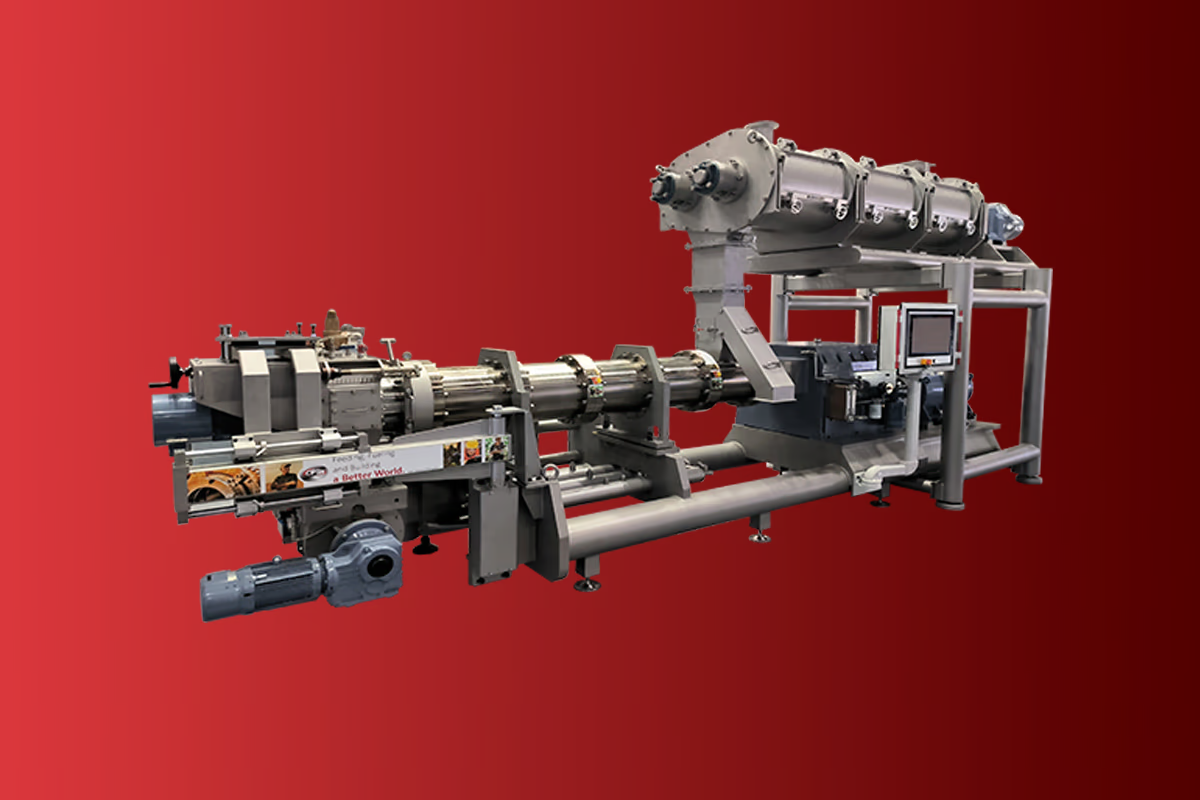 Market Information
Market Information
3+ MIN
11/03/2025
All in one - CPM Sees Growth in the Pet Food Industry for 2025
A Growing Market
Olivier expects the global pet food market to continue growing in 2025.
'We love our pets and owners are spending more on them than they ever have before,' Olivier said.
As the growth continues, CPM will be right there each step of the way.
'We are a one-stop shop for the customer,' he said. 'From your standalone solution to turnkey systems, that's where we're going, and it's a complete cycle with aftermarket and automation.'
Innovation at the Forefront
CPM is positioning itself as an innovative leader in the segment as well. One example is the use of a new permanent magnet synchronous motor in its extruder. Olivier said customers are already seeing the benefits from the design.
'Our motor is smaller than the typical motors out there, and has a stable torque with lower noise pollution,' he said.
The motor delivers up to 10% in energy savings, reduces noise pollution by 30% and is half the size of a typical motor in the pet food extrusion market, making it easier to transport and install.
Using Experience to Build the Future
Leveraging the years of experience from its family of brands, CPM is also in the process of developing a new dual-pass dryer and vacuum coater.
The dryer comes from Wolverine Proctor, which boasts more than 200 years of experience in the thermal industry and is a leader in the food processing sector. The vacuum coater is in production with IDAH, which is a leading shrimp feed equipment provider in Asia.
'We're really excited where this is going,' Olivier said. 'Our full lines include first dry kibble with capacities of 3, 5 and 10 tons per hour before expanding to other applications.'
CPM also offers hammermills, preconditioners and everything else on a pet food line.
Comprehensive Solutions
The equipment is designed and manufactured with the customer in mind. It's hygienically engineered and made to be durable and affordable. That includes spare parts and service for the lifetime of the equipment.
'Since we manufacture all of the parts, we control the process,' Olivier said. 'We have better control in-house; we know the equipment is durable. Plus, we're fast and flexible in making it.'
Reducing downtime, costs and errors is also a priority. CPM's automation solutions mean customers from a single location can receive, monitor, grind, batch and perform thermal control applications across their plant locations, all while backed by the industry's best applications and engineering support.
Looking Ahead
CPM has innovation centers strategically placed around the globe and expects the newest one to arrive in China in 2025.
'Our innovation centers really allow us to perfect our customers' processes so they can be confident that their product will be at its best with our equipment,' Olivier said.
For more information on what solutions CPM has for you, visit Pet Food | CPM
By CPM
Source: All Pet Food Magazine
 Market Information
Market Information
1+ MIN
10/03/2025
Factory - Where the Pet Industry Meets the Supply Chain
The pavilion, entirely dedicated to innovation and quality in the pet food and pet care supply chain, will host exhibitors specialising in advanced machinery for production and packaging, with technologies that enhance the efficiency and sustainability of production processes.
There will also be raw materials and ingredient suppliers showcasing the latest innovations, such as insect flours, plant-based proteins, and functional ingredients for the well-being of pets.
Innovations in sustainable and smart packaging will also be featured, which is essential for maintaining product integrity and communicating with consumers. Logistics and industry service companies will complete the offering, bringing advanced solutions to optimise product distribution and trade.
Factory is the dynamic hub where you can explore the sustainable and cutting-edge solutions that are revolutionising the industry and distribution. It's also a showcase of the industry's foundations, offering international players the chance to discover new pathways for their business.
Contact us to book your stand or for more information!
Source: Zoomark
 Market Information
Market Information
3+ MIN
07/03/2025
Symrise accelerates in Human Health and Pet Nutrition through a strategic partnership with HBC
HBC is committed to ambitious growth plans and envisions to refurbish the HBC Berkak facility into a state-of-the-art enzymatic hydrolysis plant that will triple the current production of HBC. Symrise and HBC will further explore new product developments and leverage Symrise's go-to-market to promote HBC products globally. 'This partnership with HBC is testament to their unique footprint and differentiated science. Their investments in clinical studies demonstrate proven benefits in key categories of metabolic health, immune health, gut health and mobility, setting them apart. This partnership is well aligned with our willingness to accelerate in health in the context of our 'One Care' journey but also with the recent creation of the Global Marine Platform to explore the vast potential that the oceans could offer us.', said Dr. Jean-Yves Parisot, CEO of Symrise AG. Sustainability is deeply embedded into HBC's DNA. HBC has developed a unique proprietary technology to upcycle fresh salmon offcuts not used in the production of fillets into bioactive ingredients with demonstrated health benefits. The collaboration between HBC and Symrise will enhance the public awareness of the health value of marine ingredients and will further help position HBC as the leader in science-led marine nutrition, globally. Jon Olav Odegard commented: 'Symrise have been a key partner for us already and we are very excited to move ahead as they will help transform our scale and market access with their well-established market presence. The human health and premium pet markets continue to grow very strongly, and this partnership will allow us to sustain our growth trajectory and position us as the leading player in the science-led marine nutrition segment dedicated to human health.' About Hofseth BioCare ASA (HBC): Hofseth BioCare is a Norwegian consumer and pet health company founded on the core values of sustainability, optimal utilization of natural resources and full traceability. It upcycles the side streams of the salmon industry by taking fresh filleted salmon and converting it from a waste product into ingredients to improve human and pet health. These ingredients are ProGo®, a mix of bioactive peptides and collagen, OmeGo®, a whole salmon oil, with all the fatty acid fractions contained in fish, and CalGo® / NT-II® salmon bone powder containing calcium hydroxyapatite and undenatured collagen for bone and joint health. HBC places scientific evidence at the forefront which has led to important academic partnerships and the identification of unique health benefits. This includes the demonstration of improved iron metabolism by boosting the body's ability to take up and use iron resulting in increased energy and vitality with ProGo® as well as the activation of the GLP-1 receptor with fat reduction in overweight adults. OmeGo® has shown important immune health benefits including recovery from viral infection and improved respiratory health and sleep in adults troubled by particulate matter pollution. Finally, CalGo® has shown both bone and joint health benefits to support healthy ageing and active lifestyles. This work has also resulted in the granting of a number of patents protecting these discoveries. It has also led to the discovery of potential therapeutics and HBC has spun out a biotech-focused company, HBC Immunology (HBCI). HBCI has raised external finance, and the lead program is in prostate cancer followed by ovarian cancer. A separate molecule is targeted as an oral, steroid-sparing therapy for asthma. For more information, visit Symrise's website HERE Source: Symrise AG
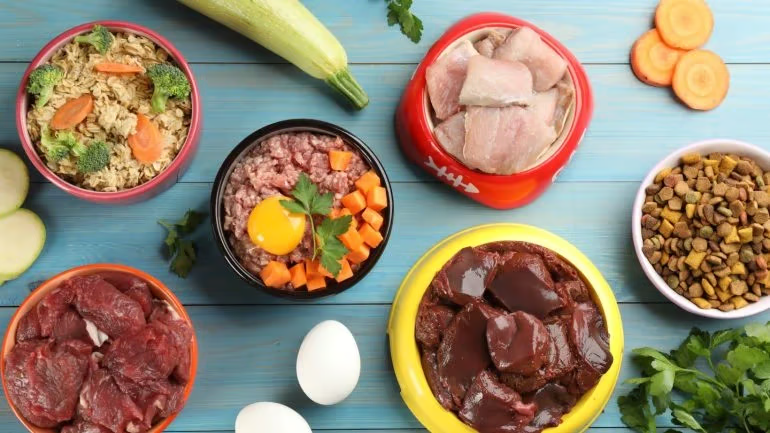 Manufacturers
Manufacturers
2+ MIN
06/03/2025
Colgate-Palmolive Enters Fresh Pet Food With Prime100 Acquisition
Colgate-Palmolive has agreed to acquire Australia-based Care TopCo, which owns the Prime100 fresh pet-food brand.
The US consumer goods company did not reveal the financial terms of the deal.
However, according to The Australian Financial Review, New York-listed Colgate-Palmolive is acquiring Prime100 from Quadrant Private Equity for A$500m ($317.5m).
In a statement, Colgate-Palmolive, which owns the Hill's Pet Nutrition business, said the deal marks its entry into the fresh pet food category.
Colgate chairman, president and CEO Noel Wallace described Prime100 as 'a high-growth, profitable, fresh dog-food asset'.
Set up in 2014 and based in Melbourne, Prime100 provides refrigerated and shelf-stable products, available through specialist pet stores and other retailers across Australia.
Hill's Pet Nutrition president John Hazlin said the deal gives Colgate-Palmolive an 'even larger, complementary portfolio of advanced nutrition products'.
The acquisition will be financed through a combination of debt and cash, with the transaction expected to be closed in the second quarter of 2025, pending regulatory approval in Australia.
When Colgate-Palmolive announced its 2024 financial results last month, the toothpaste giant said its overall pet segment, including Hill's Pet Nutrition and private-label operations, generated net sales of $1.14bn in the fourth quarter, up from $1.11bn in the corresponding period a year earlier.
For 2024 as a whole, the group's pet business recorded $4.48bn in net sales, an increase from $4.29bn in 2023.
The division's operating profits in the fourth quarter rose 19% to $275m. Annual operating profits were $965m, up from $806m in 2023.
During 2025, Colgate-Palmolive plans to leave the market for private-label pet nutrition.
Source: JustFood
 Market Information
Market Information
2+ MIN
05/03/2025
Keys to Retail Success in 25
Due to an ever-evolving consumer, technological and economic landscape, some retailers 'are on the verge of a make-or-break era—a reckoning of sorts,' concludes the latest annual retail market overview from Deloitte's Consumer Industry Center. But that could well translate into good news for many.
'Since the COVID-19 pandemic, the retail industry has been moving into a digitized future, shifting from a supply-driven approach of matching goods for the masses to a data-driven hyper-personalized experience for individual consumers, or moving from mass to micro,' the report notes. 'However, given the high transitional costs and headwinds of legacy systems and business models, the transformation has been easier said than done. Transition challenges remain constant, including headwinds from fragmented consumers, falling volumes, supply chain issues, increased costs, and tech debt. These issues have driven some retailers to the verge of a make-or-break era—a reckoning of sorts.'
Still, as retailers struggle with an overarching need to do more with less, ongoing automation and technology improvements — especially in artificial intelligence — appear promising, the report notes.
'Generative artificial intelligence, in particular, seems to be moving beyond the hype cycle and demonstrating concrete successes. Retailers that offered gen AI tools like chatbots during the Black Friday weekend noted a 15% better conversation rate, and six in 10 retail buyers said that AI-enabled tools improved demand forecasting and inventory management in 2024. With digital efficiency looming, 2025 could be a breakthrough year, including advancements in strategic arenas of merchandising, supply chain and marketing.'
Indeed, in the survey integrated into the report, seven in 10 retail executives expect to have AI capabilities in place within the year to help personalize experiences.
'Such potential is spurring a more positive retail outlook. Retail executives in a recent survey expect the industry to grow by mid–single digits on average in 2025. They cited shoring up loyalty programs, strengthening digital commerce and enhancing the omnichannel experience as top growth opportunities, which are notable in that they are all key factors in creating a more holistic, frictionless, and personalized experience for the consumer.'
From its industry executive survey, expert interviews and financial analysis, Deloitte sees three retail industry trends emerging to create efficiencies and advance mass to micro goals:
Engaging the value-seeking consumer
Unlocking omnichannel capabilities
Mastering efficient mass to micro
Click here for more from the Deloitte report.
Source: Pets+
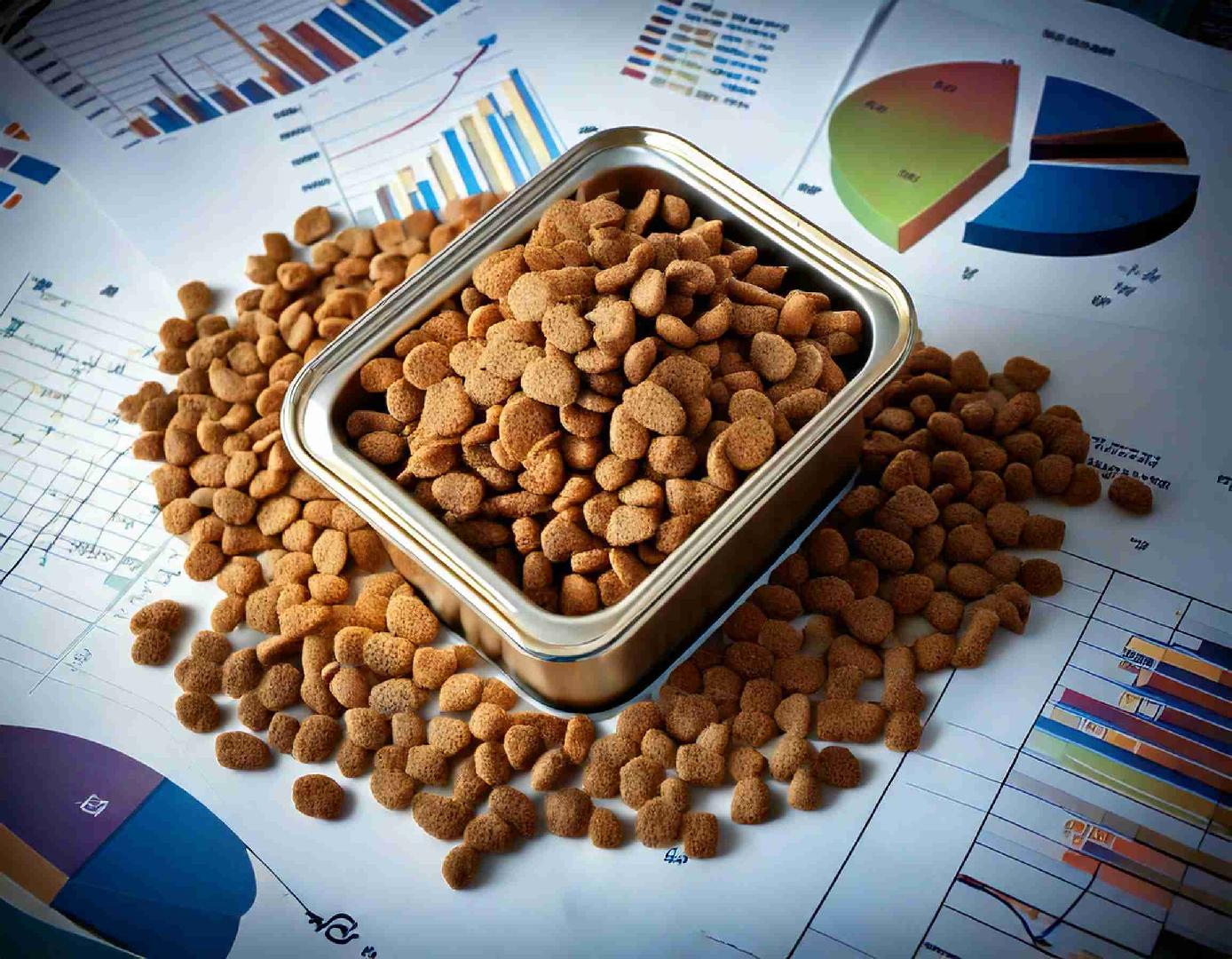 Market Information
Market Information
2+ MIN
04/03/2025
The Southern Cone: Opportunities and Challenges in the Transformation of the Pet Food Market
From consolidating premium pet food products to leveraging by-products for more sustainable production, manufacturers have a unique opportunity to make a difference. At Clivio Solutions, we are here to support them every step of the way.
Economic Growth and the Premium Market Boom
In Argentina, signs of economic recovery are benefiting key sectors, including the pet food industry. This context allows manufacturers to develop long-term strategies, particularly focusing on premium products, due to:
More demanding consumers: Pet owners are seeking superior-quality foods, rich in high-value biological proteins, and free of artificial additives. Pets are increasingly regarded as members of the family.
Portfolio diversification: Suppliers are offering specialized ingredients, such as functional proteins, purified fats, and natural supplements that comply with strict regulations.
Customized solutions and process automation play a key role in this scenario. Companies adopting these technologies can reduce operating costs, improve efficiency, and better respond to the growing demand for premium products.
Sustainability: By-products as an Opportunity
Sustainability is another fundamental pillar in the market's transformation. Repurposing animal by-products —such as offal, bones, and meat meals— not only fosters a circular economy but also aligns with a global trend: minimizing waste without compromising quality.
Advanced processing equipment designed to separate, purify, and reuse these raw materials is essential for maximizing production efficiency. By implementing these technologies, manufacturers in the Southern Cone can remain competitive while meeting international standards.
Our commitment to the pet food industry involves supporting companies in their most ambitious challenges, offering innovative technologies that not only optimize processes but also ensure the highest product quality.
Tailored Solutions for an Evolving Industry
In a constantly changing market, the ability to adapt and adopt customized technologies is essential. From automation systems to specific solutions for improving product quality, pet food manufacturers have a unique opportunity to positively impact their clients' operations.
Our mission is to work hand-in-hand with companies, helping them optimize processes, reduce costs, and ensure the highest quality in their products. Thanks to our extensive global experience, we are dedicated to assisting them in implementing solutions that help overcome market challenges and elevate their operations to the next level.
Conclusion: The Path Toward a Premium and Sustainable Future
The Southern Cone represents a key development point for the global pet food industry. Changes in the economy, consumer mindset, and the adoption of sustainable practices are shaping a challenging yet opportunity-filled landscape.
As strategic partners, we take responsibility for collaborating with pet food manufacturers by offering tools and solutions that boost their competitiveness and enable them to stand out in this transforming market.
What are you waiting for to take the next step? Contact us and take your business to the next level.
By Clivio Solutions
Source: All Pet Food Magazine
 Nutrition
Nutrition
8+ MIN
27/02/2025
Using the Gut-liver Axis to Guide Nutrition
The gut-liver axis is defined by the bidirectional crosstalk between the gastrointestinal tract and the liver in health and disease. Signals continuously arise from dietary, genetic, and environmental factors. Key players in this conversation are the intestinal mucosal barrier, the gut microbiome, the portal vein, and the liver/biliary system.
The immune system also interacts with each component of the gut-liver axis. Understanding each part of this axis and its role in gastrointestinal and liver disease may help direct therapies, including nutritional interventions, medications, and supplements that modulate and support the gut mucosal barrier, intestinal microbiota, and liver regeneration and repair.
Gut-liver crosstalk
How many cases of gastroenteritis do you see where elevations of liver enzymes are present, or perhaps mild cases of vomiting and/or diarrhea where you see an elevation of alanine transaminase (ALT) liver enzyme and no clinical signs are noted?
For some cases, we can see this enzyme rise when signs of gastroenteritis occur and then resolve, but for others, it seems to persist over time. Questions arise: what is the cause of this liver enzyme elevation, and why is it persistent despite resolution of clinical signs? We must work through our differential list for all possible causes of ALT elevation (in dogs and cats, this includes hepatocellular injury or, less often, muscle damage and is related to cell damage, increased membrane permeability, blebbing or necrosis, which can be transient or permanent; half-life of ALT is 59 hours in dogs and 2.8-4.4 hours in cats).1,2 However, this rise in ALT may reflect the crosstalk within the gut-liver axis that is always happening.
The Gut-Liver Axis Anatomy in the dog is composed of the intestinal mucosal barrier within the intestine, the portal vein, the liver/ gall bladder/ biliary system, and the gut microbiome. Source: Disorders of the Liver and Gallbladder in Dogs by Sharon A. Center
The intestinal barrier
Within the intestinal tract, specialized barriers exist to regulate what bacteria, bacterial products, nutrients, and metabolites may cross through and reach the liver. Anatomically, this includes the intestinal mucosa, the epithelium, and the immune system. The intestinal mucosal barrier serves as the interface between the inside of the body (interstitium or submucosa) and the outside (intestinal lumen, the external environment). A mucous layer exists on its surface, which may be affected adversely or even disappear during conditions of dysbiosis.
Tight junctions are present between mucosal epithelial cells that work to prevent the translocation of bacteria and bacterial products from the intestinal lumen across the barrier to gain access to the body and its vascular system. Bacteria within the microbiome produce short-chain fatty acids (SCFAs), which provide energy for mucosal cells as well as ligands that seal and boost gut barrier function.
Bile acids within the intestinal lumen also serve as metabolic regulators by influencing the gut bacterial composition in addition to assisting with fat digestion and absorption. They interact with specialized receptors on intestinal and immune cells. A specialized receptor called Farnesoid X receptor (FXR) serves as a sensor of bile acid synthesis and secretion along with enhancing mucosal epithelial barrier function and even repairing gut microvasculature.
The Intestinal Mucosal Barrier in Health and Disease.28 On the left, the intestinal mucosal epithelium has a loosely adhered and tightly adhered mucous layer. The epithelial cells are aligned with normal anatomy, intact tight junctions and normal villi perform digestive and absorptive functions. On the right, the intestinal epithelial barrier is depicted in a compromised state such as that which occurs with patients with chronic enteropathies. A dysbiotic microbiome is present with less diversity and function, the mucous layer is disrupted and less attached, and the intestinal epithelial cells are shortened and will have less optimal digestive and absorptive function with loss of tight junctions that may allow
potential translocation of bacterial and bacterial by-products across the barrier stimulating an inflammatory response. Source: Suchodolski JS - Assessing and Managing the Gut Microbiome in Canine and Feline Practice. In "Purina Institute - Canine and Feline Clinical Nutrition Handbook, 2023 edition"
Portal vein
The portal vein functions to transport nutrient-rich blood from the gastrointestinal tract to the liver for processing, storage, or conversion to energy. Carbohydrates, fats, and proteins are all transported to the liver to participate in further metabolic pathways. Toxins and waste products from digestive organs are also transported to the liver and detoxified. Blood from the portal vein delivers antigens from the gut to the liver, where it interacts with the immune system and serves as the first line of defense from pathogens and toxins entering the body from the gastrointestinal system.
When liver disease is present, portal hypertension can disrupt the intestinal barrier and cause vasodilation, elevated plasma volume, intestinal wall edema, and expansion of epithelial intercellular spaces leading to loss of tight junctions. This will increase intestinal permeability and cause "leaky gut," which increases the risk of translocation of gut luminal contents across the gut barrier.
Bacteria and their metabolites, including endotoxin (lipopolysaccharide), will activate the immune system triggering both pro-inflammatory and pro-fibrotic cascades. With a diseased liver, exaggerated or unregulated immune responses occur. This inflammation will cause increased oxidative stress and decreased antioxidant status leading to direct cellular damage and further degradation of the intestinal barrier.
The gut microbiome
The gut microbiome comprises bacteria, yeast, viruses, parasites, and archaea that live within and throughout the intestinal tract. Abnormal gut microbial balance, or dysbiosis, is thought to be a key stimulus of intestinal inflammation and intestinal barrier dysfunction.
Dysbiosis is characterized by a loss in microbial diversity. Within the gut-liver axis, it may be impacted by impaired enterohepatic circulation, altered gut motility, or altered bile acid metabolism. With dysbiosis, the intestinal barrier becomes compromised, and bacterial translocation creates a cycle of increased inflammation, immune system activation, impaired bile acid metabolism, and reduced SCFA production. These contribute to worsening gut barrier function.
Liver and biliary system
Liver disease can include cholestasis or hepatic dysfunction, and decreases in bile acid metabolism are seen. This can alter intestinal motility and permeability, stimulating both hepatic and intestinal inflammation. Compounded with this is a reduction of bile acid-converting bacteria resulting from dysbiosis, which increases the level of primary hydrophobic toxic bile acids traveling through the intestinal tract and directly damaging intestinal and hepatic cell membranes. A decline in FXR signaling reduces intestinal barrier function, further decreasing primary bile acids.
Nutrition and supplements
What does this mean for the veterinary practitioner? For our patients with suspected disruption of the gut-liver axis, we need to consider interventions that support and restore normal gut balance at all components.
For mildly affected patients, we can recommend a "multi-modal" treatment plan focused on nutrition, prebiotics, probiotics, postbiotics, and sometimes fecal microbial transplantation.
More severely affected patients or those with persistent liver enzyme elevations will warrant further workup (bile acid testing, gastrointestinal panel (TLI, pLi, B12, folate), imaging (ultrasound), and liver biopsy). In some cases, we may need to consider antibiotics, anti-inflammatory or immune-suppressing medications, or even bile acid sequestrants.
For many patients, however, using strategies with diet, supplements, and medications that address each area of the gut-liver axis can help improve our patient's care.
Nutrition is the foundation
Diets recommended to manage acute gastroenteritis will be highly digestible, highly palatable, and contain a moderate protein level (not excessively high or low), moderate to lower fat, and include variable amounts of mixed fiber sources.
A therapeutic commercial gastroenteric diet or a temporary home-prepared diet can be offered until appetite and stool quality improve. A therapeutic commercial diet or a complete and balanced home-prepared diet can be fed long term if the patient responds positively. For some patients, diet trials on different foods may be required to find the best nutrition plan. Examples of appropriate diets for managing dogs presenting with gastroenteritis are included in Table 1.
Prebiotics, probiotics, postbiotics, and fecal microbial transplantation
Prebiotics and probiotics improve intestinal health primarily by interacting with the intestinal microbiota, increasing beneficial intestinal metabolites, enhancing mucosal barrier properties, and promoting cellular and humoral immunity.
Prebiotics nourish the beneficial microbes and support microbiome balance and diversity and can be delivered by natural foods or supplements. Numerous fibers have been studied as inclusions in pet foods, and research is ongoing to understand how fibers can support various populations of gut microbes in positive ways. Trial and error may be required to find the best fiber type, level, or combination for an individual patient.
Probiotics can interact with the existing patient microbiota and create competition for nutrients, antagonism, or secretion of bacteriocins and other antimicrobial factors inhibiting pathogens and supporting microbiota stability.
Postbiotics have traditionally referred to the metabolites produced by probiotics; however, the definition now includes inactivated micro-organisms and their fragments, which can also provide positive benefits to the microbiome.
Fecal microbial transplantation (FMT) is becoming an increasingly popular therapy for dogs with acute and chronic enteropathies. A few studies have noted improvements in clinical indices and a reduction in disease severity. Potential benefits of utilizing FMT could include restoration of secondary bile acids, increased proportion of SCFA-producing bacteria and SCFAs, and improvement or resolution of dysbiosis. These features can also help support the gut-liver axis.
Antibiotic stewardship
Prescribing antimicrobials for acute and chronic diarrheas has been common practice in veterinary medicine.18,19 However, empiric use in dogs and cats has little scientific support. A recent study noted no improvement in outcomes of dogs receiving antimicrobials versus other supportive supplements.
Use of antimicrobials has been shown to cause dysbiosis and a reduction in microbiota richness and composition. These changes may result in an unstable microbiome and relapses after treatment. In addition, exposure to antimicrobials has been identified as a risk factor for the development of inflammatory bowel disease.
Other supplements
For liver support, supplements can be added to provide antioxidant support, such as S-adenosylmethionine, silymarin/ silybin, and vitamin E. Curcumin, the active component in turmeric, has anti-inflammatory and anti-angiogenic properties and may improve circulation and reduce hepatic fibrosis.
Immunomodulation with arginine and beta-glucans is often provided in supplements targeting gut support. L-glutamine may supply the preferred fuel source for enterocytes and support repair of the epithelial barrier; however, caution is warranted with significant liver dysfunction as supplementation may challenge ammonia tolerance.
In more chronic cases, supplementing the omega-3 fatty acids to provide eicosapentaenoic acid (EPA) and docosahexaenoic acid may help reduce the production of inflammatory molecules. Additional supplementation of B vitamins (cobalamin, folate) may be considered for the provision of metabolic cofactors or correction of depletion caused by gut dysbiosis.
Multi-modal therapy is key
When making treatment plans for these patients, remember to consider all aspects of the gut-liver axis, as they have both gastrointestinal and hepatic involvement. Consider how you can support each component of this axis, how you can do so with nutrition and/or supplements, then reassess and adjust.
For mildly affected patients, it may only be necessary to use nutritional changes, but the addition of select supplements may also hasten recovery.
For those with more severe clinical signs or persistent liver enzyme elevations, it is warranted to pursue additional diagnostics as usual, and medications may be indicated along with nutritional and supplemental interventions.
By Laura Gaylord, DVM, DACVIM (Nutrition)
Source: Veterinary Practice News
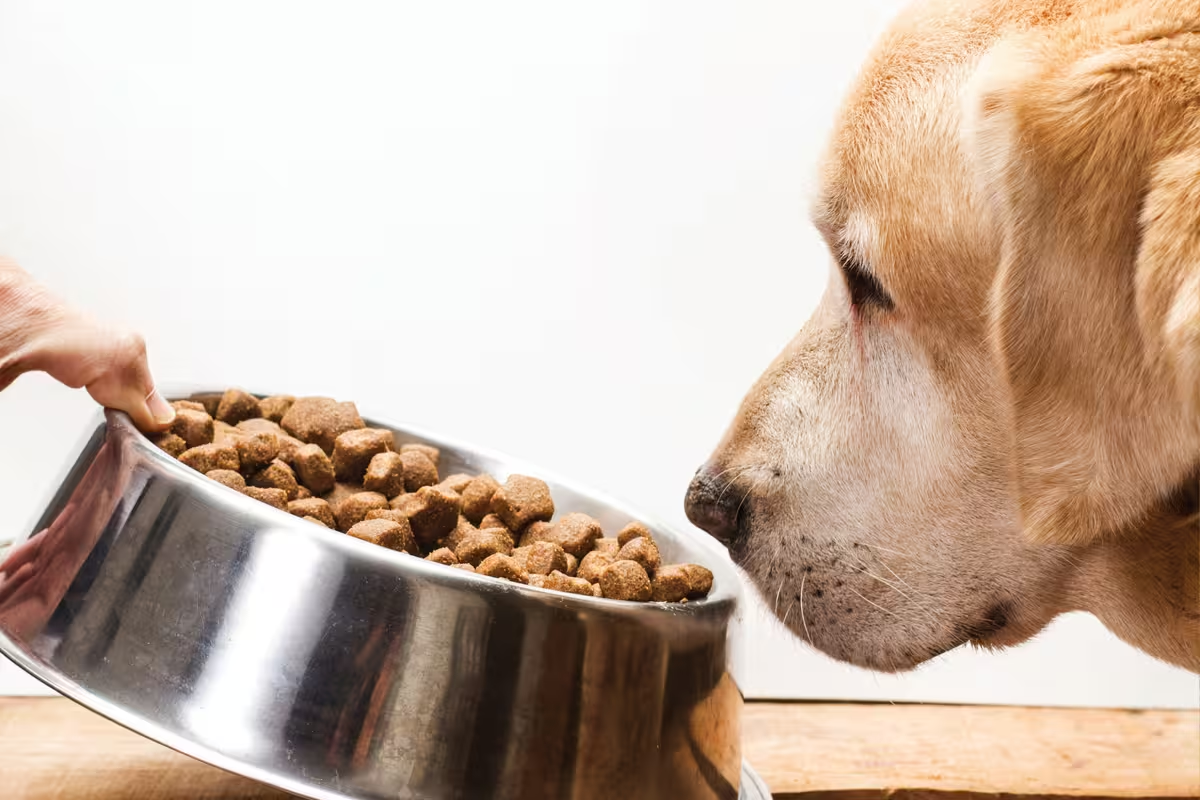 Technology
Technology
5+ MIN
25/02/2025
Improving Product Purity in Meat Rendering and Pet Food Processing
Sources of Metal Contamination in Meat Rendering
In the meat rendering industry, the sources of metal contamination vary depending on the part of the process and type of product. The objective of a magnetic separator is to prevent an unacceptable amount of contamination generated in a milling process being transferred to the client to deal with.
For example, many ovine meal processors face a challenge with removing slow-release capsule springs from rendered meat, which get ground-up within the product. Having a magnetic separator to extract these fine metals is an excellent way to increase the quality controls and solve this issue.
A common source of contamination found in poultry processing are magnetic stones, which originate from the gut of the poultry and are ingested from the ground while feeding. The magnetic stones can be removed by utilising powerful magnetic separation equipment.
Another very common source of metal contamination in meat rendering is the hammer mill. As the hammer mill materials slowly wear away, these metal fragments (coarse and fines) are introduced into the product. Effectively extracting these fragments can only be done with a strategically positioned, high-intensity magnetic separator.
To reduce machine protection issues in the meat rendering industry, these types of magnetic contamination need to be removed from the process. Factors such as screen breakage, downtime, loss of production, and tramp iron contamination causing fires/explosions in the hammer mill can all be drastically reduced by placing correct metal fragment controls in place. This means less downgraded products, reduced quarantined shipments, prevention of brand name damage, and satisfied clients!
Many rendering industry professionals state that they were not aware of the levels of fine metal fragments within their meat and bone meal until installing a magnetic separator and seeing the vast amount of magnetic fines extracted. A great way to discover the levels of metal contamination in your finished meat meal is through utilising a certified Lab Test Magnet Probe. The magnetic probe is placed into the bag of finished meal and swirled around to collect magnetic fragments and provide an indication of the metal contamination levels.
Sources of Metal Contamination in Pet Food Processing
Predominantly, metal contamination comes from bulk ingredients and is then distributed throughout the product lines. The remainder of contamination is generated in the process and varies greatly depending on the type of impact machinery that is used for sizing and screening ingredients and the longevity and wear of conveying systems.
The objective of magnets in pet food is to control contamination on bulk intakes and to also act as a final control prior to packing areas and metal detection. Magnetic separators play a crucial role in retaining the magnetic fines contaminants that are below sensitivity threshold of metal detection before they reach the CCP. An efficient magnet will drastically reduce waste from metal detectors and improve product purity from magnetic fines contamination.
Magnetic Separation Solutions for Meat Rendering & Pet Food Processing:
Mag-Ram® Automatic Self-Cleaning Magnet
The Mag-Ram® Automatic Self-Cleaning Magnet has proven to be one of the best performing and successful magnets as it can be programmed to automatically clean itself and therefore save operator time, as well as reduce safety risks. Typically installed at incoming dry materials locations (such as MBM or grain) and final dry product/bulk out-loading locations.
Mag-Ram® Self-Cleaning Magnet in meat rendering
In some applications, the contamination is so high that manually cleaning conventional grate magnets is neither practical nor convenient. Once contamination builds up over the magnetic bars, the magnet's strength is 'cancelled out', meaning that further contaminants passing over the magnet just keep flowing down the product stream and remain in the finished product.
The modular design of the Mag-Ram® allows it to handle anywhere between 3T to 90T per hour! This self-cleaning magnet can clean one ram at a time or all at once, and a wear equalization feature is incorporated to prevent flat spots on the magnet and uneven wear on the seals. This means more reliability for a longer period of time.
The Mag-Ram® magnetic bars/rams are engineered to rotate with each cleaning cycle, and short bursts of air are directed at the magnets also help remove the pyramid of excess material from being carried over to the reject side. This means a lean contaminant sample is achieved, easy to analyse for more accurate traceability of risks and less product wastage.
Spherical Inline Pneumatic Transfer Magnet
Where a gravity-feed magnet, such as the Mag-Ram®, is not feasible and the product is pneumatically conveyed via blow, vacuum, or pneumatic transfer line, a Spherical Inline Pneumatic Transfer Magnet is a very effective solution. These aerodynamic magnetic separators are very resilient in high-flow and abrasive applications and enable efficient extraction and retention of metal from high-velocity powder lines without experiencing bulk density problems.
Spherical Inline Pneumatic Transfer Magnet
Dual Round Nose Plate Magnet
For difficult-to-flow applications with products such as cakes (or crax), or applications processing chicken frames, whole muscle products, poultry, beef, lamb, venison, etc, a Dual Round Nose Plate Magnet is an efficient solution. For pet food processing applications, these units can be installed prior to expensive processing machineries, such as grinders, shredders, dicers, and emulsifiers, to remove metal fragments to avoid costly damage, downtime for repair/maintenance, and loss of production. Dual Round Nose Plate Magnets easily pick up chunky contaminants such as nails and bolts from the product and protect machinery without an unacceptable restriction to the product flow.
Dual Round Nose Plate Magnet in a rendering application
Rapidclean® Grate Magnet
The Rapidclean® Grate Magnet is an effective grate-in-housing system designed for dry ingredients such as meals and powders. With easy-cleaning operations conducted wholly outside of the product zone and the absence of stainless steel sleeves, the Rapidclean® is a hygienic alternative to conventional sleeved grate magnets and pull-through wiper-style magnets. Plant operators can also fully inspect magnet bars before they are returned to the product flow.
Contamination collected on Rapidclean® Bars
Emulsion & Slurry Pipeline Separator
For viscous meat emulsions, slurries, and liquids, from which it is often difficult to extract weakly magnetic fragments, a hydro-dynamic Emulsion & Slurry Pipeline Separator provides superior product-to-magnet contact and more efficient magnetic separation.
The Emulsion & Pipeline Separator features powerful, high-intensity +11,000 gauss Acutex® Probe Magnets. These patented magnets intercept the flow of product and extract physical metal fragments including work hardened stainless steel (originating from equipment wear) and magnetic stone particles.
Emulsion & Slurry Pipeline Separator installed in a pet food application
Improve your foreign metal fragment controls, product purity and value, and reduce risks with powerful magnetic separation equipment. Contact Magnattack® and talk to experienced metal fragment control specialists about the right solution to integrate into your process.
By Magnattack
Source: All Pet Food Magazine
 Market Information
Market Information
2+ MIN
21/02/2025
Resounding Success of the International Rendering Symposium 2025
Growth in Participation and Global Reach This year, the event showed significant growth in the global audience, with a noticeable increase in international participation. Spanish and Portuguese attendees showed higher growth with strong interest from Colombia, Brazil, and Mexico. Moreover, French as the official language allowed the event to extend to new regions, including Africa. The in-person version brought together a highly specialized public, while the online viewers were active during the event, consolidating the global impact of this year's edition. A Great Effort of Dissemination and Digital Production The International Recycling Symposium 2025, organized by the North American Renderers Association (NARA), achieved a significant impact thanks to the comprehensive strategy of dissemination and digital production. The advertising had the valuable support of associations and specialized media, such as ABRA, All Pet Food, and Pet Food Latinoamérica, which actively contributed to its dissemination through digital platforms, increasing the reach in the sector. Besides leading the symposium's organization, NARA played a key role in the digital production of the event, managing each stage of the process: before, during, and after the event. It also had the support of AgriGlobal Market, which collaborated with the digital strategy, ensuring effective communication and an accessible platform for participants at a global level. An Expanding Event The rendering and animal nutrition industry was a meaningful sector in the event and represented an important part of the attendees. In addition, the growing participation of the education sector reaffirmed the importance of the symposium as a training and updating platform for professionals in the industry. The success of the International Rendering Symposium 2025 bolsters the relevance of the event as an essential meeting point. With growing global interest and expanded participation, the symposium continues to position itself as a benchmark in the discussion about sustainability and the biocircular economy worldwide. The conferences in all languages and the PDFs of each presentation are available on the event's official webpage: Home | Nara Symposium. About NARA The North American Renderers Association (NARA) is the leader in promoting responsible recycling of animal products, supporting sustainable practices that boost biocircular economies and encourage a green future for the following generations. Source: North American Renderers Association (NARA) Check out our summary of the event and the interview with Charles Starkey:
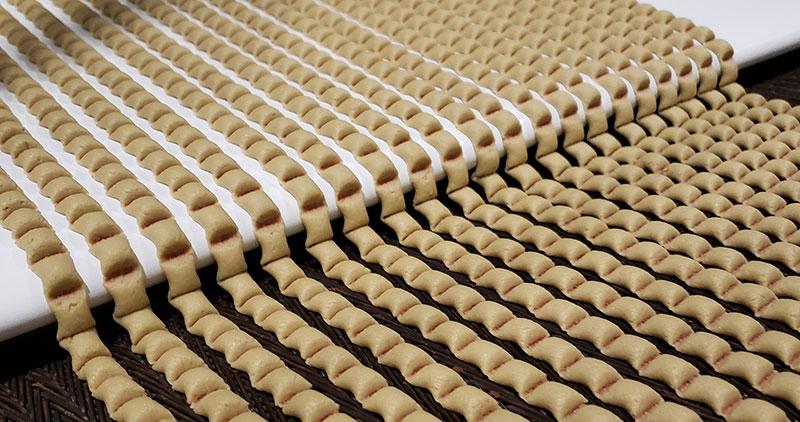 Manufacturing Process
Manufacturing Process
3+ MIN
21/02/2025
RBS Baked Pet Food Systems: Optimized, Automated Solutions for Baked Pet Treats and Baked Kibble (Part 2)
RBS BAKING AND DRYING PICTURED: An RBS single pass convection oven for baked kibble and treats. Unlike cookie baking, which involves a mix of sugars and butters that need time to develop, pet food baking uses meat-based fats that require a faster, even bake. This is why pet kibble and treats are typically baked in a convection oven on an open mesh belt. Precise and uniform heat and airflow controls are essential, since too much heat in the first zones of the oven will cause case hardening of the product that keeps it from reaching proper moisture removal targets. The Prism convection oven addresses all of these concerns and more. This RBS oven system features automated airflow and conveyor speed controls that support an even bake for higher product quality and consistency. For baked kibble and small treats, RBS offers a proprietary oven over kiln for the most efficient space usage. While the final oven zone can be used as a dryer for lower throughput lines, most baked pet food products, particularly treats, require more drying. To ensure optimal product quality and shelf life, final baked pet food moisture targets should fall within the 8 – 10% range. The RBS Multi-Pass Dryer will help you meet these targets more effectively. Our Multi-Pass Dryer features three mesh tiers that allow the product to tumble from level to level to promote more even drying. Hot air is forced through the product pile from above and below each conveyor belt, and each conveyor tier can be set at different speeds for greater production flexibility. The Multi-Pass Dryer also features full-length doors on each side that open both ways for easy access and cleaning. PICTURED: The RBS MultiPass Dryer on a pet treat production line. As part of our sustainability initiatives to manage oven emissions and energy usage, we build our ovens with better insulation to minimize the conductive heat paths from the interior of the oven to the exterior. RBS also uses lighter-weight oven belting to help conserve energy, and we offer items like high-efficiency motors and heat reclamation systems that can assist by reheating the oven makeup air. Alternative heat sources and electric oven options are available for all RBS oven configurations. ADVANCED BAKING MEASUREMENT AND MONITORING To further support product quality, our proprietary SCORPION® 2 Data Logging Measurement System provides essential data during product development, system installation and commissioning and daily operation. The system features sensing bars and product probes that measure product temperatures as well as surrounding oven temperatures, air velocity, humidity and heat flux. During product development and oven set up, the SCORPION ® 2 can eliminate guesswork and save time in taking a product formula from pilot scale to production. During production, the SCORPION® 2 detects cold spots that can interfere with the kill step, and hot spots that can overheat the product and destroy nutrients. Measurements can also be saved as part of an overall safety log to validate the kill step. The SCORPION® 2 is a single user-friendly platform for data collection, analysis and problem-solving. HEALTHIER PET FOOD STARTS WITH RBS If you're ready to capitalize on the expanding and profitable baked pet food market, look to RBS. Our automated, energyefficient systems leverage many decades of cookie, pretzel and pet food production expertise, while our Science & Innovation Center provides system and product development support that other manufacturers can't match. For more information about RBS Baked Pet Food Systems, please visit www.readingbakery.com. Source: Reading Bakery Systems
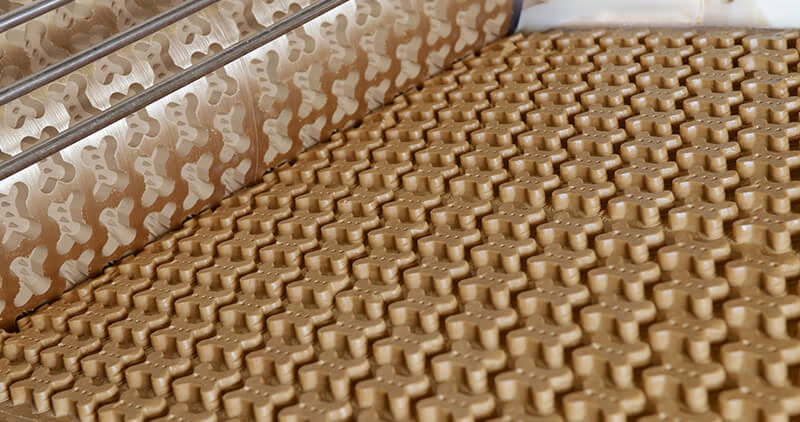 Manufacturing Process
Manufacturing Process
3+ MIN
20/02/2025
RBS Baked Pet Food Systems: Optimized, Automated Solutions for Baked Pet Treats and Baked Kibble (Part 1)
While baking pet food is a costlier, lower throughput process than high pressure extrusion, it promises much higher profit margins. Pet food owners perceive baked pet foods to be healthier and more humanized, so they are willing to spend more on them. Baked pet food production lines can produce kibble and treats, making them more flexible than high pressure extruded systems. That flexibility also enables innovation in new product development.
Baked kibble and treats share the same five production steps: mixing, feeding, forming, baking and drying. With baked kibble, outputs are higher and involve fewer shapes and ingredients than treats, so production is geared for greater throughput. With baked treats, outputs are lower but involve more shapes and ingredients, so production is geared toward greater flexibility.
Accordingly, your system and production processes will depend on your product portfolio. As the only OEM that offers a dedicated pet
food system from mixing through baking, RBS can help you select and optimize a baked pet food system for your current and future
product mix.
AUTOMATED, BAKED SYSTEM SOLUTIONS
Backed by 130 years of baking industry experience, RBS has been developing baked pet food systems and solutions for over 20 years. Our move into the baked pet food market was a natural evolution, as cookie and pretzel production are very similar to baked pet food production. And just like our cookie and pretzel systems, RBS baked pet food systems are engineered for sustainability, energy-efficiency and cost-effectiveness.
For most RBS customers, the introduction to our baked pet food systems and solutions begins at our state-of-the-art Science & Innovation Center. This unique research and development facility allows our customers to test products and processes on RBS equipment before purchasing. Our engineers will work with you to demonstrate our process machinery, validate product ingredients, produce market samples and more. It's a key part of the RBS system selection and optimization process, and it allows us to educate our customers on the many equipment considerations at each production stage.
RBS MIXING OPTIONS
PICTURED: A batch mixer, dough feeder and kibbler feeding a rotary moulder.
All RBS automated baked pet food systems start with either a batch or a continuous mixer. Depending on your products, each has its pros and cons. Batch mixers are generally best for low-to medium-capacity production lines, especially those with multiple recipe changeovers. In contrast, continuous mixers enable a much higher throughput and are usually the preferred choice for high-capacity lines. Continuous mixing offers several important benefits over batch mixing, including a fully automated system that reduces labor, saves energy, improves consistency and simplifies your mixing process.
RBS DOUGH HANDLING OPTIONS
The selection of a batch or continuous mixer will affect your dough handling equipment choices. With a batch mixing system, the larger batch sizes need to be broken down and metered into the forming equipment, a process that requires larger and more feeding equipment. With a continuous mixing system, the dough stream is discharged in smaller sizes, which enables smaller and less equipment. RBS has a portfolio of dough handling equipment for batch or continuous systems.
RBS DOUGH FORMING OPTIONS
PICTURED: Co-extruded pet treats produced on an RBS pet food line outfitted with a Low-Pressure Extrusion System.
RBS baked pet food systems are available with a variety of forming equipment options. Representing the industry standard, our rotary moulders can handle higher fat doughs and are flexible enough to produce kibble and treats. RBS wirecut machines are great for softer cookie-like products and bars.
Our low-pressure extruders can produce unique shapes and are ideal for rugged-looking kibble or kibble with a 60% or higher fresh meat content. Co-extrusion and sheeting systems are available for filled and cracker- type products.
PICTURED: An RBS rotary moulder producing baked pet kibble.
Source: Reading Bakery Systems
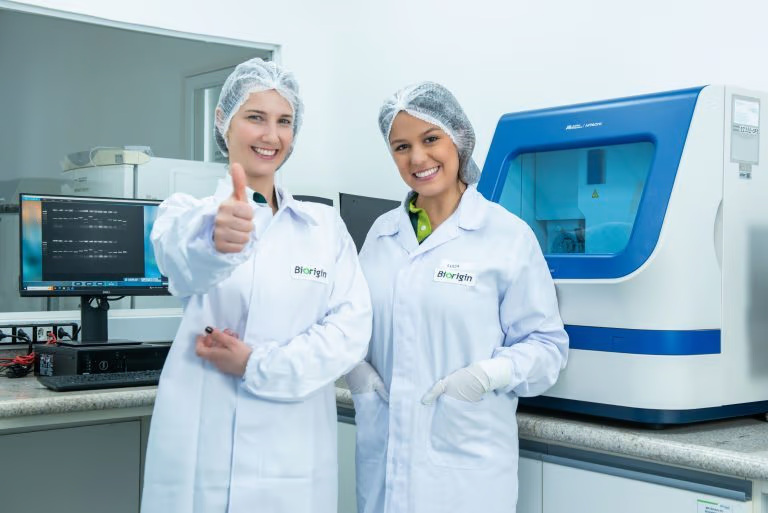 Sustainability
Sustainability
3+ MIN
19/02/2025
Biorigin's Annual Report Highlights Positive Impact in Sustainability Actions and One Health Practices
It believes in "One Health", which is based on the principle that an integrated and unified vision is necessary to promote and optimize the health of people, animals, and the environment.
For example, it is essential to take care of the health and hygiene of animals and the environment, offering a nutritionally complete and balanced diet to animals, helping to prevent diseases and strengthen the immune system and intestinal health, among other important practices to ensure nutrition, health, and well-being.
Therefore, since we share the same ecosystem, the Brazilian company reinforces its objective of practicing sustainability actions that ensure the connection between animal, human, and environmental health.
"Owners are increasingly attentive to the needs of their dogs and cats and look for foods that contain high-quality, functional, and sustainable ingredients, factors that make a difference when choosing food for their pets. At Biorigin, we pride ourselves on developing naturally derived solutions, such as Saccharomyces cerevisiae yeast derivatives, which offer proven benefits for animal health and meet trends such as humanization, premiumization, and specific nutrition. With over 20 years of experience, we guarantee quality, full traceability, and sustainability, combining innovation and animal welfare. Our technical team is driven by the mission of promoting health and functionality, creating foods that reflect this commitment to increasingly demanding pet owners and aligned with the global demands of the pet market", shares Thaila Cristina Putarov, Global Business Manager for Nutrition and Animal Health at Biorigin.
To reinforce its commitment to transparency and socio-environmental responsibility, Biorigin published its Annual Sustainability Report, highlighting the 2023/2024 harvest. The document presents data on Zilor and Biorigin's initiatives from April 1, 2023, to March 31, 2024.
Check out the main highlights:
Biorigin's biogenic carbon emissions were 14 times greater than its non-biogenic carbon emissions. To learn more about Biorigin's carbon-neutral cycle, click here [LA1] .
For the eighth consecutive year, Biorigin was recognized with the Gold Seal in the Brazilian GHG Protocol Program [LA2] for disclosing the inventory of Scope 1 and 2 emissions, verified by a third party by ISO 14064-3:2007 (SGS).
100% of the electricity used by Biorigin comes from renewable sources, as does 100% of the steam used in operations at the Quatá Unit and 97% globally (Biorigin Global).
25% of the waste generated is destined for recycling and reuse, and 15% of the water used in our production process is reused.
Launch of the Biorigin +Sustentável 2030 Program to mobilize knowledge, innovation, and technology to promote, in a sustainable way, health and well-being for people and animals.
The excellence of the work developed by Biorigin is proven by the certifications obtained and revalidated over the years, reinforcing its commitment to quality and sustainability:
In addition to sustainability initiatives, Biorigin shares some institutional information:
It currently has 468 employees, of which 32% are women;
Women hold 40% of Biorigin's leadership positions (coordinators and managers), and 23% of operational leadership is also female;
It has approximately 454 active suppliers and partnerships with 44 universities, research institutes, and laboratories in Brazil, in addition to 22 abroad;
90% of production is destined for more than 60 countries, serving markets in North America, Europe, Latin America and Asia;
There were no deaths, serious accidents, or accidents with mandatory reporting, achieving a zero rate in all these categories;
An investment of R$ 70 million was approved in the Quatá unit to increase its global presence and production capacity.
To access Biorigin's 2023/2024 Annual Sustainability Report, click here [LA3]!
BIORIGIN
With over 20 years of experience, Biorigin is a leader in natural ingredients and meets the demands of the pet food market, providing solutions that help improve intestinal health, pets' immunity, and food attractiveness. Click here [LA4] to learn more about the company and its products.
Source: Biorigin
References
[LA1] https://biorigin.net/en/carbon-neutral-cycle-discover-biorigins-sustainable-initiative/
[LA2] https://biorigin.net/en/biorigin-maintains-the-gold-seal-in-the-ghg-protocol-for-the-eighth-consecutive-year/
[LA3] https://www.zilor.com.br/en/relationship-with-investors/corporate-governance/sustainability-report/
[LA4] https://biorigin.net/en/pet-section/
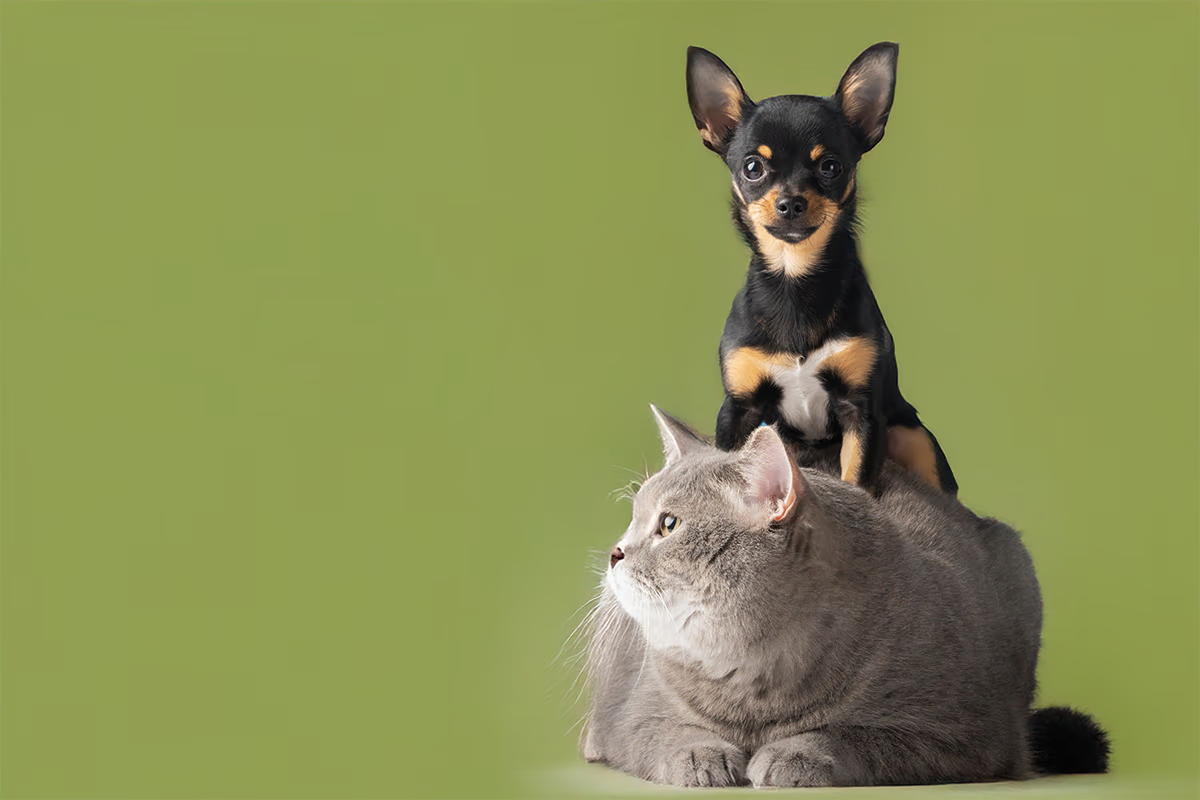 Market Information
Market Information
2+ MIN
18/02/2025
Por Iván Franco
Pet Food LATAM, 2025: Small Breeds, Big Changes
Loyalty from brands has demonstrated surprising resistance against inflation. Meanwhile, consumers have not abandoned their favorite ones, not in terms of blind loyalty, but because increases in time have affected them in a similar way. In response, owners have modified their decisions, choosing new companion animals. Here is where the story changes.
Small Breeds and Cats: Main Characters
Consumers' preferences have drastically changed; cat and dog small breeds have become the most preferable ownership option. Our studies and analysis proved that this phenomenon is changing the pet ecosystem in Latin America.
Consider this statement: on average, a small dog eats 90 g of dry food daily, while a big breed consumes up to five more. When adopting small cats and dogs, owners achieve an emotional and economic balance. This change significantly reduces food consumption per pet. For this reason, families choose to adopt small pets instead of medium/big ones, achieving the largest company without having huge costs.
Anyway, this means a challenge in the industry: a contracted market with less net food consumption and more aggressive competence.
The Industry Faces the Innovation Challenge
2025 requires that pet food companies combine creativity and strategy to navigate the new trend. Providing new products is not enough, brands must redesign and specialize in their offers. These are the key opportunities:
Customized formulations:
Develop food that connects with small pet owners, promoting well-being, health, and longevity.
Introduce functional varieties that meet the specific needs of each breed, such as weight control or digestive care.
2. Purpose packaging:
Designs that show small-breed beauty and cat elegance.
Adopt sustainable solutions that attract environmentally conscious consumers.
3. Memorable experiences:
Launch reward programs to boost consumer relationships in the long term.
Tell emotional stories reflecting pet love and care.
4. Dynamic channel strategies:
Reinforce digital presence with personalized subscriptions and overpowering offers via online.
Widen sales points specialized in building consumer confidence and loyalty.
2025: The Visionaries Year
This year will determine the way forward for leading companies in the market. In a context where small breeds and cats are consolidated, brands must fully understand their consumers' aspirations and have audacious proposals.
I recommend brands to embrace what is new. Innovation means surprise, not reinventing the cycle. In this historical moment, those with sight and inventiveness will write the next chapter in the pet food market.
2025 entails the opportunity to make the industry more than a turnover. It is time to create attractive experiences that connect and make us fall in love. Are you ready to lead the change?
By: Iván Franco
Source: All Pet Food Magazine
 Sustainability
Sustainability
5+ MIN
17/02/2025
Sustainability, Transparency Shaping Future of Dog Chews & Treats
The evolving preferences of today's pet parents have placed significant focus on environmentally responsible and healthconscious products. As a result, dog treat and chew manufacturers are doubling down on clean ingredients, ethical sourcing, ecofriendly packaging and retailer education. Industry leaders believe this shift is not just a passing trend but rather a long-term evolution in the pet sector, as consumers demand both functional benefits and transparency.
"Over recent years, we've seen a transformative shift in consumer behavior," says Phoebe Cooper, marketing manager for Natural Farm. "As individuals prioritize sustainability and ethical sourcing in their everyday lives, this focus has naturally extended to their pets. Pet parents are becoming more intentional about what they buy, ensuring their furry family members enjoy treats and chews that align with their values. This growing demand is driving innovation across the industry, and sourcing transparency and sustainability are becoming non-negotiables."
CLEAN, FUNCTIONAL & INNOVATION INGREDIENTS
The push for healthier ingredients is driving product innovation across the board. Pet owners are more informed than ever, scrutinizing labels for ingredients that deliver functional benefits while avoiding additives, fillers or allergens. To that end, the onus is on manufacturers to ensure they're keeping up with pet parents' preferences.
"Healthy Dog Chews is always exploring innovative ingredients to meet the evolving needs of pets and their owners," says John Parrottino, owner and partner at Krijon, parent company of Healthy Dog Chews. "Recently, we've introduced yak cheese chews fortified with superfoods like turmeric, pumpkin and flax seed, which have natural anti-inflammatory and antioxidant benefits."
Functional ingredients, such as superfoods, are also becoming an industry standard, delivering health benefits that go beyond basic nutrition. For dogs with specific dietary sensitivities, manufacturers are also expanding their protein offerings to meet demand. For example, dairy-based chews are gaining traction. With naturally high protein and calcium content, cheese and yogurt chews provide nutritional benefits while remaining highly palatable for pets.
"Our cheese- and yogurt-based chews naturally incorporate functional benefits—they are rich in protein and calcium to support strong bones, healthy teeth and muscle development," says Nate Kredich, president of Himalayan Pet Supply. "We continue to research and explore other functional ingredients to help bolster the health benefits of our core products."
Kredich also notes that he's seen success with Himalayan's Yogurt Stick line, a product that reflects growing consumer interest in gut health and probiotics.
"We have always focused on using the fewest ingredients possible while also delivering the most benefit to our pets," Kredich says. "For instance, we recently expanded our popular line of Yogurt Sticks with new flavor combinations while ensuring that the chews continue to provide gut health benefits with over 300 million CFUs (colony-forming units) of probiotics, as well as prebiotics."
As pet parents prioritize health and wellness, brands are responding with simple, clean formulations and functional enhancements that serve their dogs' needs while aligning with their values.
REDUCING ENVIRONMENTAL IMPACT
Eco-friendly packaging is another major focus for manufacturers seeking to meet consumer expectations for sustainability. Pet parents not only want clean products for their dogs, but also environmentally responsible solutions that minimize waste and carbon footprints.
"We are currently adopting a bulk product sales model that is eco-friendly and reduces the amount of plastic used," Parrottino says. "Many of our customers create well-designed 'raw bars.' In the future, as we brand our products, we will be using small tags that are recyclable."
This approach serves two purposes: Reducing plastic usage and creating a visually appealing in-store experience that allows customers to interact more directly with the products.
"Packaging innovation plays a vital role in reducing our environmental footprint. At Natural Farm, we've adopted certified I'm Green bio-based plastics for our pouch products," says Cooper. "These are made from sugarcane ethanol, a renewable resource, reducing greenhouse gas emissions compared to fossil fuel-based plastics. Additionally, many of our packages incorporate at least 30 percent post-consumer recycled materials, using recycled PET resin to support a circular economy. These steps ensure that we're reducing waste while setting a higher standard in the pet industry."
For companies like Natural Farm, packaging innovation is part of a broader commitment to sustainability. By combining renewable materials with recycled content, they're creating a model for reducing environmental impact without sacrificing product quality or presentation.
RETAILER EDUCATION & ENGAGEMENT
With consumers placing higher importance on transparency, manufacturers are working closely with retailers to ensure they have the knowledge and tools to communicate these values effectively to shoppers.
"Retailer education starts with partnerships," Cooper says.
"We work closely with our retail partners, providing them with detailed resources about our sustainable practices and ethical sourcing. This includes transparent information on our supply chain, the benefits of our packaging innovations and insights into the value of choosing products made with integrity. Through in-depth training materials and ongoing support, we empower retailers to feel confident in promoting Natural Farm products."
Retailers are also reimagining their in-store displays to create experiences that align with consumers' sustainability expectations while driving product engagement, as Parrottino notes that Krijon's customers, "typically get creative with treat bar formats to match the store's look and feel."
To that end, Himalayan Pet Supply is taking this approach a step further with its new bulk display format.
"We developed the new bulk display to enhance the in-store experience and encourage pet parents to touch and experience the product without the barrier of the packaging; it is both visually appealing and environmentally friendly since we eliminated the standard plastic packaging," Kredich says. "The unpackaged chews have a color-coded hang tag that makes it easier for shoppers to select the right chew for their dog."
By offering bulk displays and interactive experiences, retailers can encourage shoppers to make sustainable choices while creating a more engaging and personalized shopping experience.
Looking ahead, leaders in the pet industry believe sustainability will continue to drive innovation. From product ingredients to packaging and retailer education, ethical practices are no longer a niche consideration but a core expectation.
"The future is bright for sustainable innovation and ethical standards," according to Cooper, who projects more demand for eco offerings. "We foresee a continued focus on reducing environmental impact, whether through ingredient sourcing, manufacturing efficiencies, or cutting-edge packaging solutions. Consumer expectations will also push companies to adopt even higher standards of transparency, ethicality and traceability."
For manufacturers and retailers, the message is clear: Consumers want products that reflect their values, and they are willing to invest in brands that prioritize health, transparency and environmental stewardship. As innovation continues to reshape the market, companies that align with these priorities will set the pace for the industry's sustainable future.
By Kelly Lindenau
Source: Pet Business
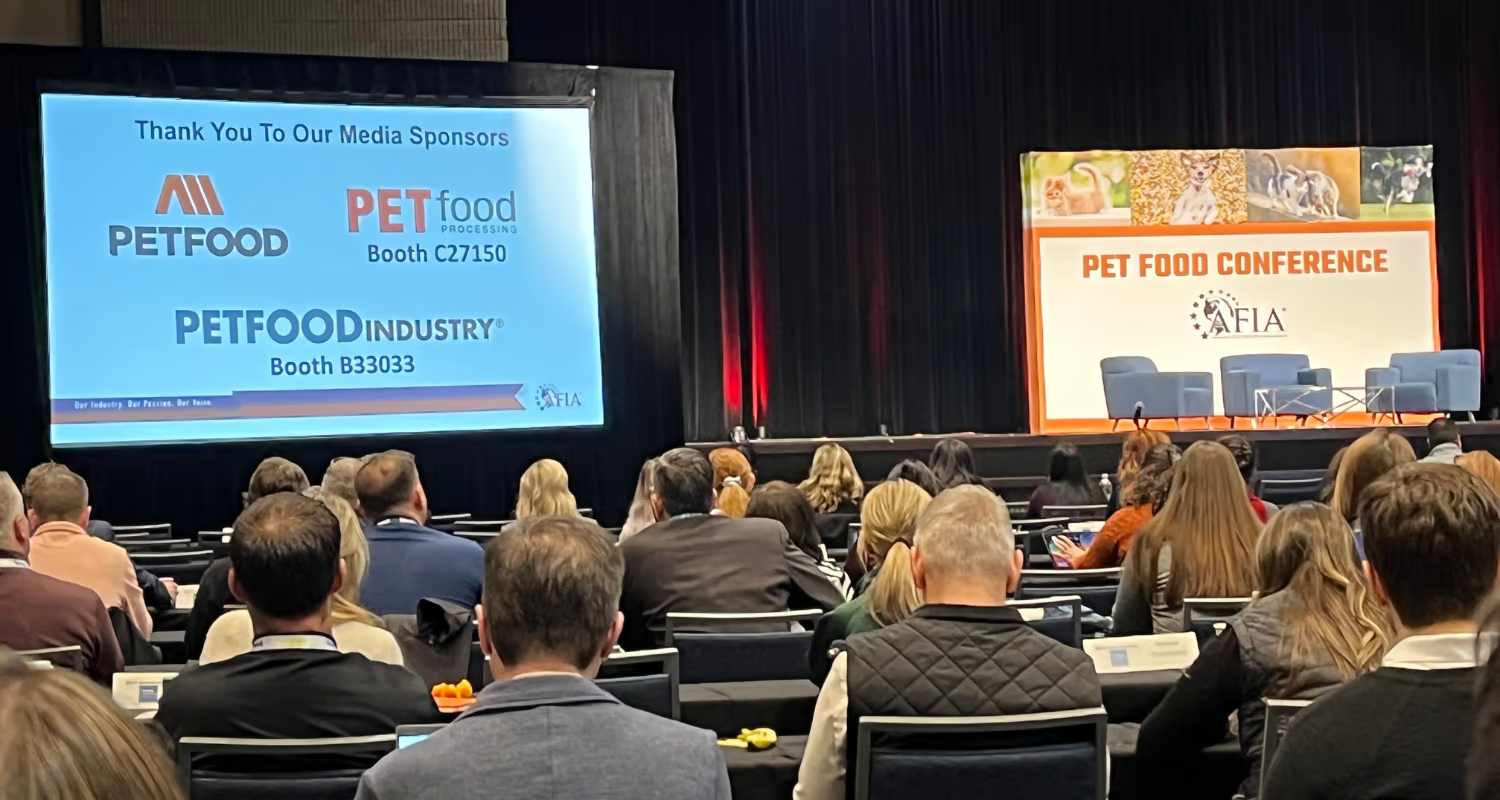 Market Information
Market Information
3+ MIN
14/02/2025
AFIA Pet Food Conference Attracts Record-setting Attendance
'It is exciting to see the continued growth of the AFIA Pet Food Conference, reflecting the industry's commitment to growth and innovation,' said Louise Calderwood, AFIA's director of regulatory affairs. 'This year's conference delivered valuable insights on everything from novel ingredients used in pet food and the latest consumer trends in pet food, to addressing critical regulatory updates. Staying up to date with these changes is essential for the industry, and we appreciate the engagement from our record-breaking audience and look forward to continuing these conversations in the years ahead.'
The 2025 conference featured sessions on pet food marketing trends, novel ingredients used in pet food, working dog nutrition and academia's role in industry advancements. Several speakers focused on the changing regulatory environment for pet food, with Austin Therrell, executive director of the Association of American Feed Control Officials, and Leah Wilkinson, AFIA's vice president of public policy and education, discussing recent changes to the animal food ingredient approval processes. Attendees also heard an exclusive preview of new industry research from Lara Moody, executive director of the Institute for Feed Education and Research (IFEEDER), who shared insights from IFEEDER's upcoming Pet Food Consumption Report, set for release later this spring.
The AFIA Pet Food Committee, which is tasked with creating the conference agenda every year, invited three graduate students to present on their current research within the pet food industry. The research topics included, 'Cardiometabolic Effects of a High Protein, Low Carbohydrate Diet in Dogs,' 'Sensory Characteristics of Jerky-style Pet Treats Made from Swine Pluck,' (pluck is pig's heart, trachea, esophagus and lungs) and 'Amino Acid Digestibility and Energy Content of Raw, Mildly Cooked, and Retorted Dog Foods.' The conference also featured four poster presentations from additional graduate and undergraduate students conducting research in pet nutrition.
The AFIA also recognized Eric Altom, Ph.D., director of innovation for companion animals and technical nutritionist at Balchem Animal Nutrition and Health, as the recipient of its 2025 Friend of Pet Food Award.
The AFIA thanks its 2025 Pet Food Conference gold sponsors ADM and Novonesis; silver sponsors Alltech, Cargill, Kemin, Midwest Laboratories, The Poultry Protein and Fat Council, Trouw Nutrition and Zinpro; and media sponsors All Pet Food, Petfood Industry and Pet Food Processing.
The 2026 AFIA Pet Food Conference will take place Tuesday, Jan. 27, in Atlanta, Ga. For more information, visit afia.org/events.
About IPPE
The International Production & Processing Expo (IPPE) is a collaboration of three shows - International Feed Expo, International Meat Expo and the International Poultry Expo - representing the entire chain of protein production and processing. The event is sponsored by the American Feed Industry Association (AFIA), the Meat Institute and U.S. Poultry & Egg Association (USPOULTRY).
About AFIA
Founded in 1909, the American Feed Industry Association (AFIA), based in Arlington, Va., is the world's largest organization devoted exclusively to representing the business, legislative and regulatory interests of the U.S. animal food industry and its suppliers. The organization's membership is comprised of more than 650 domestic and international companies that represent the total feed industry-manufacturers of commercial and integrated feed and pet food, ingredient suppliers, pharmaceutical companies, industry support and equipment manufacturers. AFIA members manufacture more than 75% of the feed and 70% of the non-grain ingredients used in the country. AFIA is also recognized as the leader on international industry developments and holds membership in the International Feed Industry Federation (IFIF).
About the Meat Institute
The Meat Institute represents the full community of people and companies who make the majority of meat American families rely on every day. The Meat Institute's hands-on regulatory and technical expertise, proactive advocacy, unique convening power, collaboration within and beyond animal agriculture, and sector-leading continuous improvement initiatives drive relationships and resources that ensure meat continues to be a vital, trusted pillar of healthy diets and thriving communities for generations to come. To learn more, visit MeatInstitute.org.
About USPOULTRY
U.S. Poultry & Egg Association (USPOULTRY) is the All Feather Association progressively serving its poultry and egg members through research, education, communications and technical services. Founded in 1947, USPOULTRY is based in Tucker, Georgia.
Source: IPPE
We invite you to watch our summary video of the event:
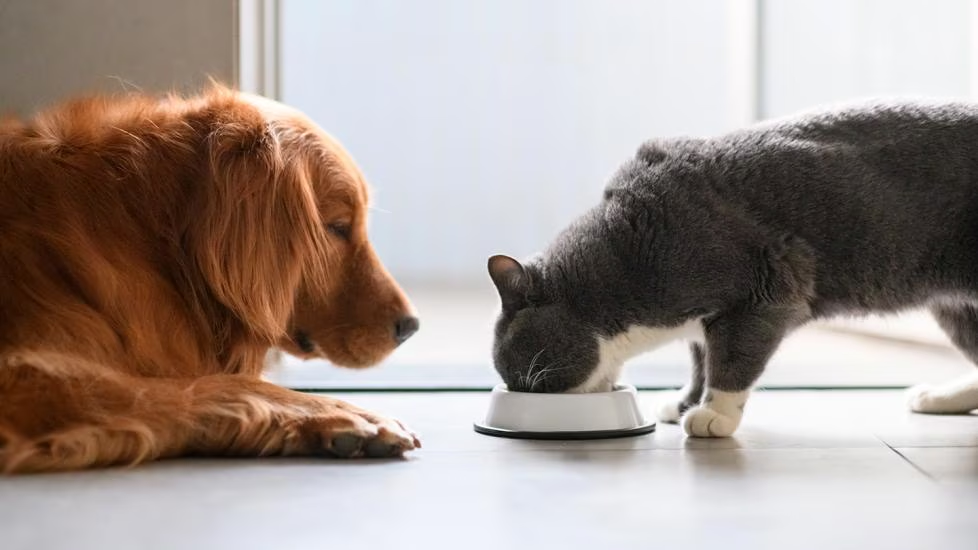 Dogs
Dogs
4+ MIN
14/02/2025
Can Dogs Eat Cat Food?
While a small amount of cat food will not cause health problems for most dogs, it's not recommended to feed dogs cat food.
Ahead, we discuss what happens if a dog eats too much cat food; the difference between dog food and cat food; and more.
Key Takeaways
While a small amount of cat food will not cause health problems for most dogs, it's not recommended to feed dogs cat food.
Dogs who eat a lot of cat food could develop an upset stomach, pancreatitis, or other health problems.
Compared to dog food, cat food is higher in protein and fat, among other nutrient differences.
What's the Difference Between Dog Food and Cat Food?
While dog food and cat food may look similar, they're actually quite different.
Most cat foods contain significantly more protein and fat than comparable dog foods. Requirements for certain amino acids, essential fatty acids, vitamins, and minerals also vary.
Here are a few of the more important differences between dog food and cat food, according to the Association of American Feed Control Officials' (AAFCO) nutrient profiles for adult dogs and cats:
Dogs and cats have distinct nutritional requirements. Dogs are omnivores. They can get all the nutrients they need by eating ingredients derived from other animals or certain plants. Cats, on the other hand, are obligate carnivores. Their nutritional needs can only be met when they eat ingredients derived from other animals.
Is It Safe for Dogs To Eat Cat Food?
Cat food is not an ideal food for dogs. If you are concerned your dog is not eating, have your veterinarian examine them to rule out underlying medical conditions, and ask your vet for dietary recommendations.
Your vet might prescribe medications to help stimulate your dog's appetite or to help with nausea. Or they may recommend a therapeutic diet for dogs recovering from an illness, injury, or surgery who need extra calories and protein.
Is It Bad for Dogs To Eat Cat Food?
Cat food can be especially bad for some dogs, including those who:
Need to be on a low-fat or moderate-protein diet
Have a history of pancreatitis, hyperlipidemia, chronic kidney disease, liver disease, or a sensitive stomach
Unhealthy weight gain can also become a problem if dogs eat cat food for a long time. But any dog could become sick after eating a lot of cat food. The exact amount that could cause problems depends on factors like the type of cat food, the size of the dog, and their current diet and health status.
Symptoms to look out for include:
Abdominal discomfort
Vomiting
Diarrhea
Poor appetite
What To Do If Your Dog Eats Cat Food
Call your veterinarian for advice if your dog is acting sick after eating cat food.
If, however, your dog seems to feel fine, simply monitor them for vomiting, diarrhea, or other signs that a problem might be developing.
Dogs who have eaten a lot of cat food (more than what a typical serving of food would be for your dog) should skip their next meal before resuming their normal feeding schedule.
How To Prevent Your Dog From Eating Cat Food
Here are some tips for keeping your dog away from cat food:
A door prop is a simple and inexpensive way to keep a door open just wide enough to let cats through while keeping all but the smallest dogs out.
Many types of cat doors are available. If your dog is roughly the same size as your cat, consider an electronic cat door that will only open when the pet who is wearing the correct tag approaches.
Consider a microchip or RFID feeder. These feeders are activated by your pet's microchip or RFID collar tag and only open when they approach.
As long as your cat likes to climb (and your dog doesn't!), try feeding your cat on an elevated surface, like a tall cat tree.
If your cat eats at specific times (rather than having food left out), you can use a crate or playpen to keep your pets separated during meals.
Can Dogs Eat Cat Food FAQs
Can a dog die from eating cat food?
While it is possible for a dog to die from eating cat food (they could develop a severe case of pancreatitis, for example), it is very unlikely. Most dogs will be fine if they only eat a small amount of cat food.
Talk to a veterinarian if your dog appears unwell after eating cat food.
What should I do if my dog wants to eat only cat food?
If your dog wants to eat only cat food, try to find a dog food that is like the cat food they like—a canned dog food with chicken as its first ingredient, for example.
Can I feed cat food to my dog?
Only feed cat food to your dog if your veterinarian has advised that you do so. Cat food contains too much protein and fat for most dogs and doesn't provide them with balanced nutrition.
By Jennifer Coates, DVM
Source: PetMD
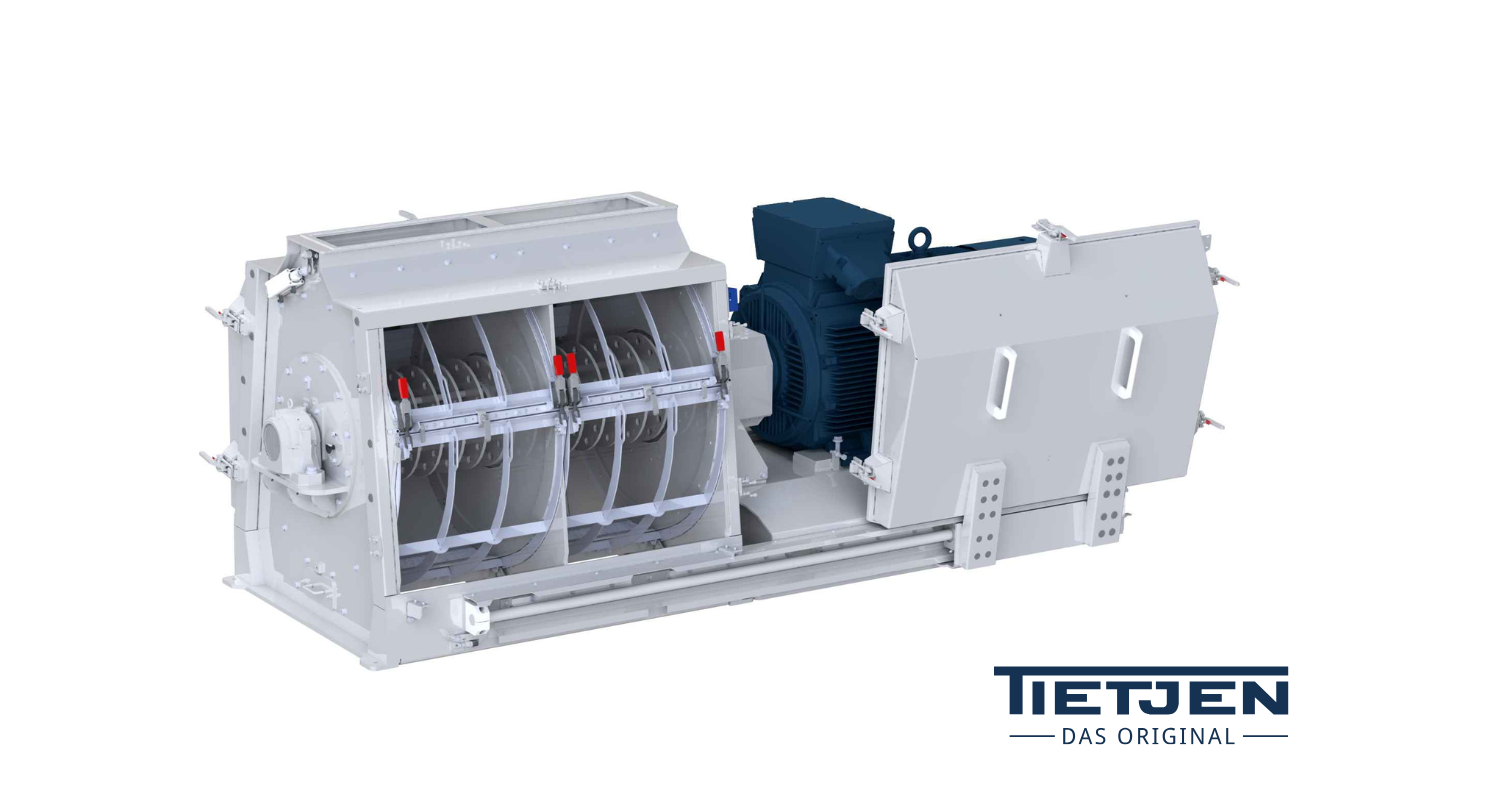 Grinding
Grinding
2+ MIN
13/02/2025
FD 32 Pro Hammer Mill: New development for the Fine Grinding of Pet Food and Fish Feed
Well-known features of Tietjen hammer mills such as robustness, user-friendliness and the smooth running of the rotor have been retained and supplemented with new design features. For example, the rotor diameter has been increased by 100 mm to achieve a higher beater tip speed and the distance between the beater tip and the screen has been reduced to prevent the screen openings from clogging in the case of high fat contents. The grinding chamber was extended to 1600 mm and divided by a centre wall so that the screens, each 800 mm wide, are easy to handle. Four screens are installed per grinding chamber segment, resulting in a total screen area of 4.8 m² (7,440 in²). A special screen fastening seals the screens so that no oversize particles can get into the product. Optionally, impact plates can be installed in place of the upper screens, with which the particle size distribution can be additionally influenced in the direction of higher fineness while maintaining a narrow particle size range. Additional impact areas are available on the sides between the screen segments. This means that coarser screen diameters can be used to save energy while maintaining the same product quality. In daily operation, the FD 32 Pro impresses with its ease of maintenance and economical operation. Large sliding doors on both sides of the machine allow easy access for screen and beater change. Beaters are changed using the beater frame system, which has been well-proven in Tietjen large chamber mills for more than 40 years. The advantages of this system are quick replacement of the beaters and reduced idling energy of the mill. Source: Tietjen Verfahrenstechnik GmbH
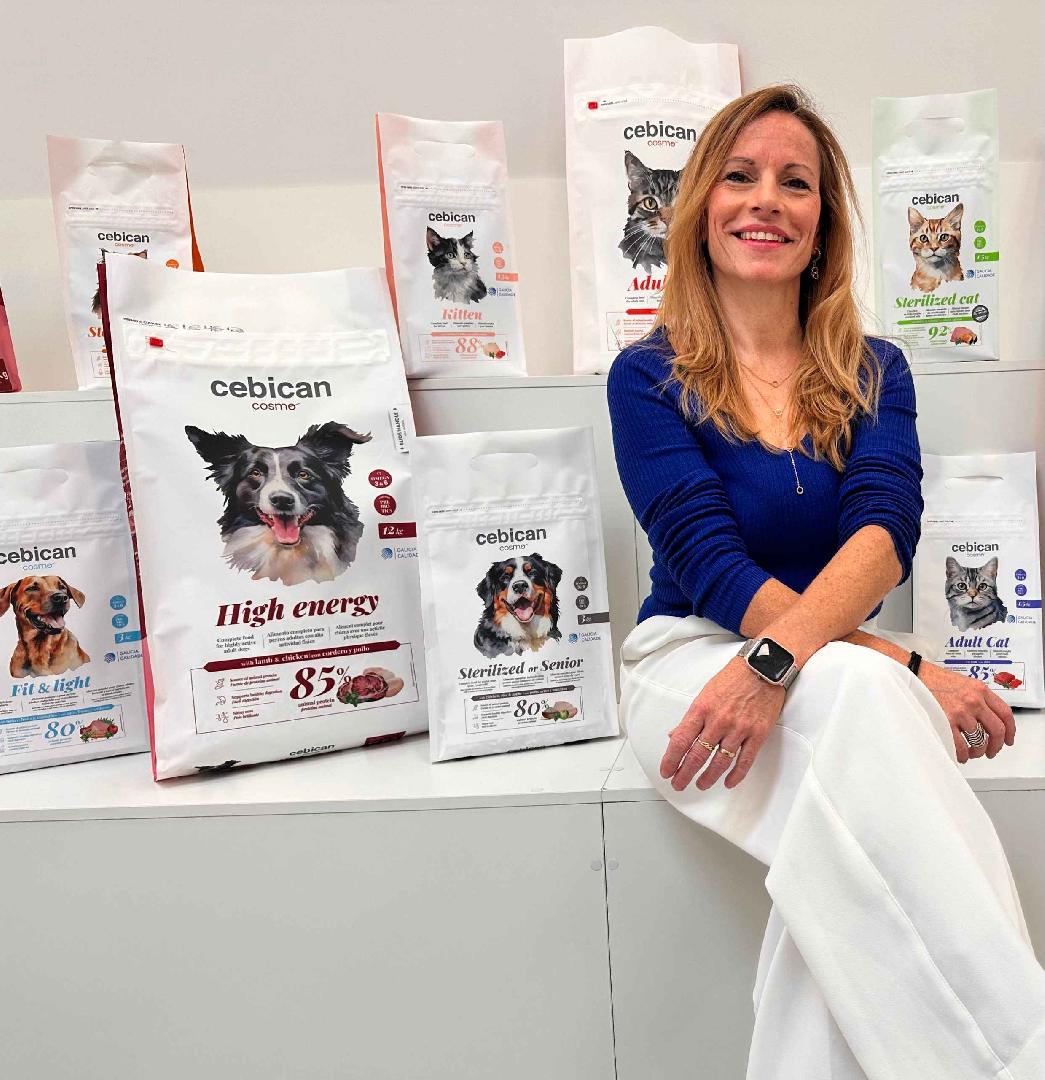 Manufacturers
Manufacturers
3+ MIN
13/02/2025
Nugape Pet Food launches Cebican Cosmo, a new universe of flavors for dogs and cats
Nugape Pet Food, one of the most important companies in the pet food sector in Spain, launches Cebican Cosmo, an evolution of its classic Cebican. This new brand is presented with a renewed design and formulation, with thirteen different recipes -8 for dogs and 5 for cats-, of high protein content which can be purchased in smaller sacks to meet the current demand for this type of food in the market.
'Our goal is to provide a complete and balanced diet for pets, which not only satisfies their nutritional needs, but also contributes to promoting a long and healthy life for those dogs and cats that we love so much and that are part of our family,' comments Sandra Cores, commercial director of Nugape Pet Food.
In addition to the high animal protein content, Cebican Cosmo includes fruits and vegetables in a balanced way to help improve the health of pets through antioxidants and phytonutrients, providing added value to their recipes. All this, without losing sight of other essential nutrients, such as taurine, essential for heart and eye care; prebiotics, which strengthen digestive health by promoting a balanced microbiota; or Omega 3 and 6, essential for maintaining healthy skin and a shiny coat, as well as having anti-inflammatory properties.
'We know that new pet parents want to give the best possible food to their pets, creating unforgettable memories. With Cebican Cosmo, we seek to reflect that special bond through packaging with watercolor illustrations of dogs and cats, evoking family portraits,' says Sandra Cores.
Along the same lines, and with the aim of adjusting to the needs of the different types of families that exist today, 1.5 kg and 3kg bags have been developed, which are more manageable and easier to transport. 'We want every detail of Cebican Cosmo, from the quality of the food to the design of the packaging, to reflect the care and love that urban families give to their furry friends,' says Cores, adding: 'We want it to be an experience that reinforces the bond between animals and their families.'
Formulas adapted to each stage
Cebican Cosmo adapts to the different life stages of pets and the nutritional requirements of each one of them, incorporating different varieties: for senior or sterilized dogs, Sterilized or Senior; for sterilized cats, No Grain Sterilized Cat; and for puppy dogs and cats there are specific formulas, such as Puppy and Kitten to grow healthy and strong. Its catalog also includes recipes for other kinds of dogs, such as High Energy for those that require extra energy, or Fit & Light, to avoid overweight.
Endorsed by IFS Food
Cebican Cosmo, through its parent company, Nugape Pet Food, has received the certifications of international organizations, such as the prestigious IFS Food standard, which guarantees that the quality and safety protocols applied in the manufacture of its products are as rigorous as those used in human food.
'In our plant in Vilanova de Arousa, we make from formulation to manufacturing and distribution of the final product in national and international markets,' explains Sandra Cores, who concludes: 'Having our own factory allows us to carry out a complete and exhaustive monitoring of the traceability of the entire production process, which translates into a guarantee of quality for the customer.'
For more information:
Nugape Communication Office - Atlántica Comunicación
[email protected] | [email protected]
Source: Nugape Pet Food
 Dogs
Dogs
3+ MIN
12/02/2025
Dog Food and Nutrition for All Ages
Water is the most vital nutrient for life. It is required for your dog's digestion and regulating their body temperature so make sure they always have access to clean water. Protein, fat and carbohydrates are essential components of your dog's nutrition and help supply them with the energy and nutrition they need for a healthy life. Finding the right diet for your dog depends on their age, breed, neutered status and lifestyle.
Puppy nutrition
If you have adopted a puppy, note that they have different nutritional needs from adult dogs. Puppy growth is fast in the first few months. They need a balanced diet of specific nutrients: fats, proteins, minerals, amino acids, and vitamins. Calcium and phosphorus are also essential nutrients for puppies to form healthy bones and teeth.
Puppies are sensitive to smells and textures but have a less well-developed sense of taste. If you're feeding your puppy kibble - texture, shape and size suitable for your puppy's size help make it more palatable to them. Puppies also have sensitive digestive systems, so make sure to feed them safe, high-quality food to avoid stomach upsets. It's also best to split their recommended food portion into small meals throughout the day. Royal Canin's feeding guide recommends the following:
Small breeds: up to 4 months - 3 meals a day, 4-10 months – 2 meals a day
Medium breeds: up to 6 months – 3 meals a day, 6-12 months – 2 meals a day
Large or Giant breeds: up to 6 months – 3 meals a day, 6-15 months 2 meals a day
Switching to an adult diet too early can alter a puppy's development and have negative long-term effects that carry on into adulthood. Monitor your puppy's healthy growth to determine if your puppy is on track with its ideal weight and help identify potential nutritional or health problems earlier, facilitating intervention before a puppy's health is compromised.
Feeding adult dogs
Dogs reach full growth at around one to two years, depending on the breed. Small dog breeds mature faster than large breed dogs like Labrador Retrievers. If your dog is transitioning from puppy to adult dog food, consult your vet for the required nutrition, feeding amount and schedule based on your dog's breed and ideal weight. Experts recommend mixing the puppy food and adult food with a 75%-25% ratio, gradually increasing to 50% each food, 75-25 adult and puppy food until fully transitioning to adult food.
Large breeds and very active dogs will eat larger quantities. Most dogs do not limit their intake if offered excess food so be sure to weigh out portions carefully and feed in one or two meals per day. There is an upward trend in pet obesity, so make sure you understand and monitor your pet's ideal weight.
Senior dog nutrition
Every dog is different, but they are generally considered a senior dog when they are in the last 25% of their expected lifespan. At this life stage, it is common for dogs to show physical signs of ageing and behavioural changes. Their nutritional needs will change too, and you may need to transition to a senior diet. Dogs at this stage may also develop health conditions like kidney disease, osteoarthritis and dental issues and need specific diets based on their medical needs. Reducing calorie intake, avoiding nutrient excess, and carefully controlling food portions may help reduce the risk of them becoming overweight or obese. Consult your veterinarian for a specific diet to meet your senior dog's unique needs.
Source: WALTHAM, Pet Care Science Institute
 Market Information
Market Information
1+ MIN
11/02/2025
Setop: Innovations in Animal Nutrition
Nutritalent: The Ideal Food Supplement for Dogs and Cats
In the pet world, our furry friend's health and well-being are the priority. Nutritalent is an innovative food supplement, made for dogs and cats; it complements the daily diet of our pets, corrects nutritional disorders, and supports organism-specific functions.
Nutritalent Benefits
Nutritalent is formulated with a combination of essential nutrients that ensure our pets receive what is necessary to meet their nutritional needs. It also promotes animal health and improves pet mobility. These are the most distinguished benefits:
Strengthen the immune system: promotes overall health.
Healthy skin and fur: contributes to healthy skin and shiny fur.
Support digestive health: using ingredients that promote healthy digestion. Nutritalent is ideal for pets with sensitive stomachs.
Provide energy and vitality: it has energy nutrients that help maintain our pets active, energetical, and full of life.
Conclusion
Nutritalent is an excellent option for those who aim to enhance their pet's health and well-being. With numerous benefits and easy administration, this supplement is an essential ally in the diets of dogs and cats.
By: Setop
Source: All Pet Food Magazine
 Technology
Technology
2+ MIN
07/02/2025
Sterilization of pet food: Maschinenbau Scholz as an experienced partner
The pet food industry is a global market worth billions with high quality and hygiene standards. Sterilization is a crucial process in the production of cat and dog food. It ensures that the food is safe, long-lasting and free from harmful microorganisms. Efficient sterilization is particularly essential for wet food, which contains animal and vegetable ingredients. Maschinenbau Scholz from Germany can draw on many years of experience in this field. Why is sterilization important? Food with a pH value above 4.5 must be sterilised in order to preserve it for a long time. This also includes wet food for dogs and cats. Without sterilization, Microorganisms could survive in the food and endanger animals and humans. At the same time, the quality, especially the nutritional value and flavour, must be preserved. To preserve this, the product must be sterilised as gently as possible. Scholz Autoclaves: Mechanical engineering by tradition With over 100 years of experience, our family business combines tradition with innovation to produce high-quality autoclaves. We are your expert for autoclaves and special containers 'Made in Germany' and offer you customised complete solutions from a single source thanks to our high level of vertical integration. Decades of working together with operators, maintenance teams and plant managers have given us the extensive experience that characterises partnership-based and professional cooperation with our customers - worldwide. Whether aviation, automotive or food industry, whether glass or building materials industry, wood or rubber processing, all these industries trust us because we understand and fulfil their individual needs. Thanks to our high temperature and process accuracy and the durability of our machines, we have grown from Coesfeld to become the global market leader with 250 employees and more than 30 agencies. Technologies in the food industry From full water autoclaves to cascaded shower autoclaves and steam-air autoclaves. Maschinenbau Scholz is your specialist for the sterilization of pet food and food! Source: Maschinenbau Scholz
 Mixing
Mixing
4+ MIN
06/02/2025
The Role of Premixing and Homogenization
The process of incorporating different liquids into a batch mixer is a critical step in various industrial applications.
Understanding the chemical properties of the liquids used, as well as employing appropriate mixing techniques, is essential to prevent issues like stratification, poor homogeneity, lump formation, and increased energy consumption.
Batch mixers are widely used in industries such as food processing, pharmaceuticals, animal feed, Pet food, chemical and materials manufacturing to blend solids and liquids into a homogeneous mixture. However, achieving uniform distribution of liquids within the solids can be challenging, especially when dealing with immiscible liquids like oil and water. The homogeneity of the final product, often measured by the Coefficient of Variation (CV), is influenced not only by the type of mixer but also by the properties of the liquids involved.
Discover the importance of premixing immiscible liquids using dedicated homogenization equipment to enhance the final product quality and operational efficiency.
UNDERSTANDING LIQUID MISCIBILITY
The ability of liquids to mix and form a single homogeneous phase is governed by their chemical properties. Liquids that can combine and form a new, uniform liquid are termed 'miscible'. Conversely, liquids that resist mixing and instead form separate layers are referred to as 'immiscible'. A classic example of immiscible liquids is oil and water, which naturally separate due to differences in polarity and density.
MISCIBLE LIQUIDS
IMMISCIBLE LIQUIDS
CHALLENGES IN MIXING IMMISCIBLE LIQUIDS
When immiscible liquids like oil and water are added separately to a batch mixer, several problems can arise:
Stratification: Immiscible liquids tend to form separate layers on the surface of the solid particles, leading to poor distribution throughout the mash.
Poor homogeneity: The inability of immiscible liquids to mix results in high CV values, indicating significant variation in the composition of the final product.
Lump formation: The separation of liquids can lead to the formation of lumps, which further degrades the quality of the mixture.
Reduced product quality: Inconsistent mixing can compromise the structural integrity and overall quality of the final product.
Increased mixer and transport contamination: Immiscible liquids can adhere to the interior surfaces of the mixer and transport equipment, leading to contamination and requiring more frequent cleaning.
Higher energy consumption: Poorly mixed liquids can cause the mixer to work harder, increasing energy consumption and operational costs.
DOSING AND HOMOGENISING
THE EML SERIES HOMOGENIZER BY PLP SYSTEMS
Achieving homogeneity in a batch mixer when working with immiscible liquids is a complex challenge that requires careful consideration of the liquids' properties and the mixing techniques employed. That's why PLP Systems has created The EML series homogenizer machine, used in all areas where there is a need to mix and emulsify various liquids or powder dispersions. Placed below the threshold of a tank, thanks to the pumping effect, allows the circulation of liquids in the container.
The intense cutting effect resulting from the combination of mechanical and hydraulic processing of the 'rotor' and 'stator', a powerful 'shear' effect is generated on the product. This process ensures a highly mixed consistency and perfect homogeneity, ensuring high-quality results for the finished product.
Comparision of liquid feed separation times. The sample on the left was obtained using a traditional mixer, while the one on the right was obtained using our EML Homogenizer.
Fig. 1-2, 70% vegetable oil; 30% H₂O. Fig. 3-4, 40% molasses, 40% vegetable oil, 20% H₂O. Comparision of liquid feed separation times. The sample on the left was obtained using a traditional mixer, while the one on the right was obtained using our EML Homogenizer.
By premixing immiscible liquids using a EML homogenizer, manufacturers can overcome many of the issues associated with direct mixing, leading to improved product quality. As industries continue to demand higher standards of quality and efficiency, the adoption of advanced mixing and homogenization techniques will become increasingly important for different industries.
EML SERIES – PLP HOMOGENIZER
PLP Systems specializes in both liquids and powders, with a special focus on the pet food and feed industries. An important area for PLP is the accurate management of liquids and powder for feed production, with a specific focus on post-pellet coating. This process involves adding micro-liquids such as enzymes, vitamins, flavors, probiotics amd yeast to the pellets, aiming to enhance their quality.
Whether you're looking to improve your current production line or explore innovative methods to increase product appeal, our technologies offer the reliability and excellence you need.
Need more information or want to dive deeper into our liquids dosing and mixing systems?
We're here to provide tailored solutions and answer all your questions.
Call us today at +39 0523 891 629 or email us at [email protected] for a free consultation.
We're here to help you find the perfect solution for your needs!
Source: PLP Systems
 Nutrition
Nutrition
4+ MIN
05/02/2025
The Benefits of Comercially Prepared Pet Food
Owners consider the likes and dislikes of the pet and their own view regarding convenience, cost and variety of food provided to the pets. There is no particular single 'right' way to feed pets, as long as the nutritional needs of the dog or cat are being met.
Prepared pet food from reputable pet food manufacturers come with a reassurance of nutritional adequacy, quality and safety. There is a wide variety of recipes, varieties and textures to choose from, and they are convenient to use. Selecting nutritionally complete pet food means that this pet food has been developed to provide a balanced diet. This pet food provides all of the animals' requirements for energy, protein, fat, vitamins and minerals.
Pet owners can mix and match wet and dry pet food, in accordance with the feeding guidelines found on the packaging, which are nutritionally complete and balanced to provide exactly the preferred mix for pet and owner, comfortable in the knowledge that they are providing complete nutrition for their pet.
Why is prepared pet food so popular?
Excellent nutrition
Convenience
Cost effective
Safety
Consistency
Variety
Pet satisfaction
Sustainability
What does prepared pet food deliver?
They provide the correct amount, balance and availability of nutrients to sustain physical and mental health and activity.
Sufficiently concentrated to allow the animal to meet its nutritional requirements by consuming the food offered.
Tastiness (palatability) to ensure the food is eagerly consumed, since an uneaten meal has no nutritional value. Palatability of the food is important as feeding time should be a rewarding experience for both the owner and the pet which reinforces the bond between a dog or cat and its owner.
By utilising quality nutritious meat and plant-based ingredients that originate from the production of human food, prepared pet food provides a sustainable source of balanced nutrition in an environmentally sustainable and responsible manner.
What is a balanced diet?
Dogs and cats need a balanced diet which contains just the right amount of proteins, fats, carbohydrates and essential vitamins and minerals to ensure that they stay in peak condition. These nutrients must be present, not only in the correct amounts, but also in some cases in the correct proportion to each other to provide a nutritionally complete and balanced diet. Pet's requirements for these nutrients varies throughout life and are determined by factors such as age, whether the pet is active or sedentary, state of the pet's health, reproduction, and environmental conditions.
In meeting the particular needs of an individual animal, the owner must provide the required amount and correct balance of energy and essential nutrients in a quantity of food the pet will consume. Since animals eat to meet their energy needs, all essential nutrients should be present in the correct amounts relative to the energy (joules or calories) in a complete and balanced food. Prepared pet food that is complete and balanced will have a statement on its label advising this fact.
Are there risks with home prepared food?
Some pet owners may choose to prepare at least some of their pet's meals themselves. However, as dogs and cats have different nutritional needs than do people, home prepared pet feeding requires a thorough understanding of the specific nutritional needs of the cat or dog, the nutritive value of different food types, dietary interactions and methods of preparation and storage which may affect the availability of individual nutrients.
For example, if the calcium level in pet food is too high or too low, it may adversely affect the health of the pet. Similarly, mismanaged fat intake can result in health issues such as pancreatic problems. In fact, a 2013 study conducted by a team of researchers at the University of California, Davis, School of Veterinary Medicine found that a vast majority of homemade recipes are lacking in nutrition. Researchers analysed 200 different recipes for home-prepared dog food, using recipes from different websites, veterinary textbooks and pet care books. The results showed that 95 percent of the recipes were deficient in at least one essential nutrient and 84 percent were lacking in multiple required nutrients.
Additionally, improperly formulated or under-cooked pet food could become contaminated with bacteria such as E. coli or Salmonella which can make your pet sick. Pet food manufacturers have safeguards in place throughout the manufacturing process to prevent such problems.
In summary
Commercially prepared pet food offers a wide variety of quality food to deliver all the important aspects of a balanced diet: nutrition, palatability, value, digestibility, sustainability, safety and convenience. They also offer variety while maintaining consistency of feeding, making prepared pet food an ideal way to feed your pet.
Source: FEDIAF
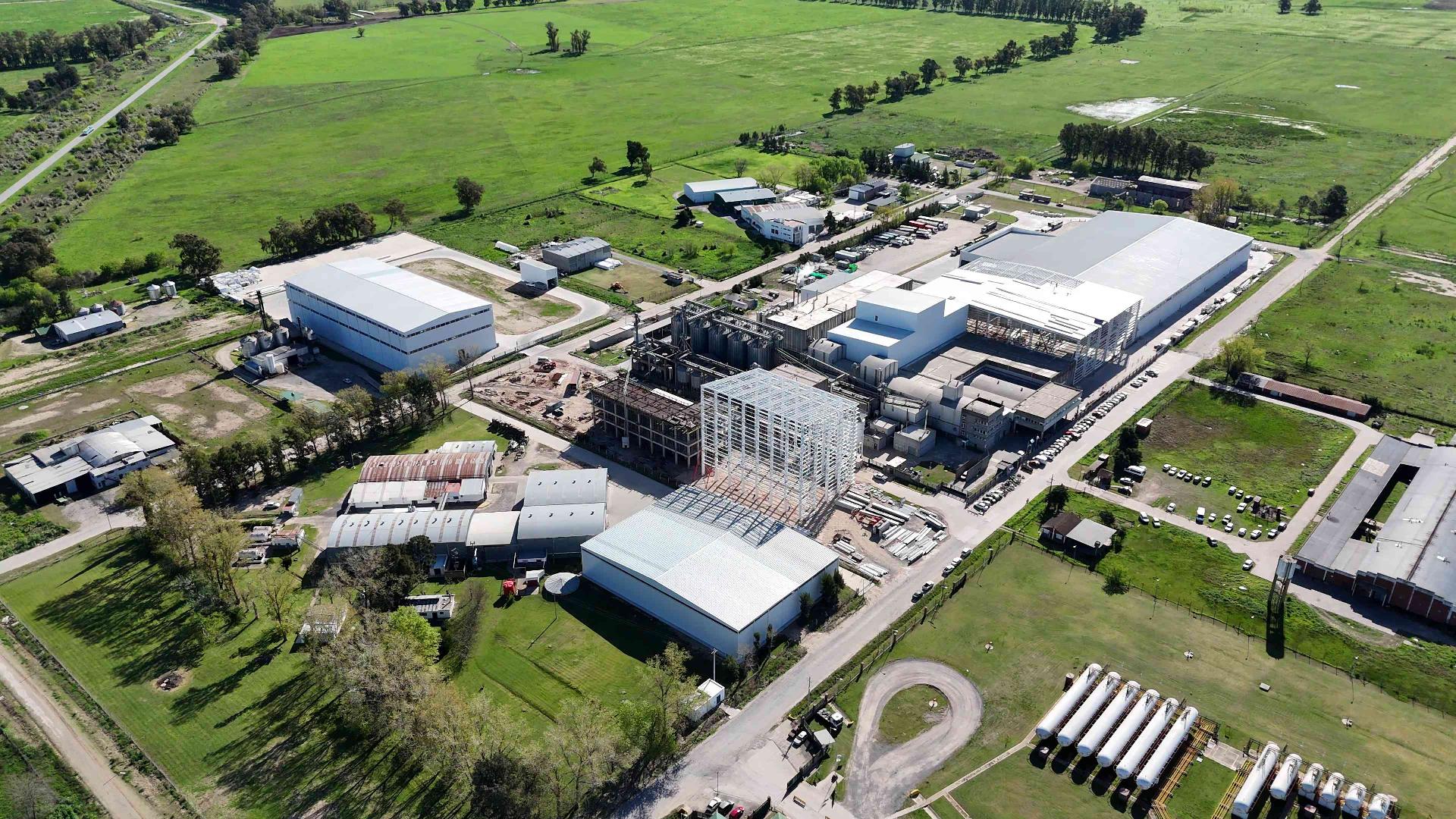 Market Information
Market Information
4+ MIN
04/02/2025
Projections For 2025: The Impact of the Pet Food Market Growth in LATAM
Marcos Giordano holds an MBA from Universidad de Buenos Aires and is the Marketing and Business Manager at Agroindustrias Baires. He dedicated his professional career to leading strategies in the pet sector. Having nine years of experience in the pet food industry, Giordano provides a comprehensive perspective on a continuously evolving market.
A Growing Market, but with Barriers
'In the last years, dogs and cats have become family members worldwide, which shows a deep cultural change. This trend transformed the pet market boosting a noticeable growth', says Giordano. However, he adds that, in America Latina, this potential has not been fully developed due to 'the economic volatility and the constant purchasing power loss', which mainly affect highly valuable products.
Despite the challenges, the expert highlights the sector's resilience: 'An encouraging point is that factors such as the increase in adoption rates and pets' life cycle are underestimated in present projections. Estimates based on current values do not reflect the potential of the pet food market.'
Trends in 2025
Facing the future, Giordano foresees significant changes in the sector:
Sustainable Products: The market needs products with less environmental impact and concrete practices of corporate social responsibility, which are becoming a priority for many companies.
Digitalization and Omni-channel Strategies: E-commerce will continue growing beyond predominant marketplaces. Integrated strategies will be the key.
Increase in Cat Population: This trend requires specific solutions to meet the species' needs.
Price-quality Relationship: Consumers look for products that combine quality with affordable prices.
New Products: Wet food, functional snacks, and fresh and lyophilized meat are products expected to grow in the following years, at a national and international level.
Structural Problems
Regulation: The main problem is the difference in regulations between countries. Each market requires specific adaptations in registration, labeling, and use of raw materials, which stop commerce and increase costs. This problem must be critical for Mercosur.
Logistics: Access to remote areas or with low population density is still restricted due to long distances, roads in bad condition, and expensive tolls. In addition, delays in harbors and customs have made operations more expensive, especially in some situations, such as the pandemic.
Costs: Economic volatility directly affects business sustainability, which along with the global increase in prices of supplies (proteins, packaging, and energy), significantly impacts production costs.
The Situation in Argentina: Strengths and Limitations
'In Argentina, we lead in the household penetration rate for pet-ownership and food consumption per capita. Our professionals are references in Latin America,' he points out.
However, this potential does not reflect on the sector growth: 'Recession and the real wage decrease since 2014/2015 have limited the market development and resulted in low average expenditure than it was expected.' Moreover, he describes a disorganized market with manufacturers, suppliers, pet shops, and veterinarians competing for the same portion.
Untapped Opportunities
Giordano considers the Latin American market to be full of development opportunities. 'The great opportunity is to educate the consumer by promoting a responsible trend and providing information about benefits in health, well-being, and economy that quality products and preventive medicine offer,' Marcos explains.
He also mentions digitalization and specialized segments as key points, saying that 'diversifying and positioning e-commerce platforms to offer personalized experiences could transform the sector.' On the other hand, he highlights products for cats, wet food, functional snacks, long-acting external antiparasitic drugs, and services (for example, pet insurance plans) as segments with great potential.
Adapting to Compete
'In such a volatile environment, daily working on improving efficiency and reducing costs to offer quality products with competitive prices is crucial,' Giordano highlights. This includes investment in technology, automation, strategic purchases, and efficient logistics.
It is also important to note the reinforcement of the brand's value. 'Consumers' loyalty and trust are fundamental. During dynamic moments, when information abounds, working on the benefits of products is essential, but I consider that improving the emotional connection between brands and clients is also important.'
The Agroindustrias Baires Role
In this context, the company where Giordano works, Agroindustrias Baires, establishes a policy of commitment to the future and growth through sustained investments. 'We are doubling our productive capability by putting faith in cutting-edge technology and a human-professional, committed team. This effort not only shows our leadership view but also our conviction that growing is possible even in the most difficult situations.'
'We are the benchmark in Argentina: our goal is to become established in the region. We continue working with certainty that current investments will make us build a solid future for Agroindustrias Baires and our value chain,' Marcos concluded.
By: All Pet Food
Source: All Pet Food Magazine
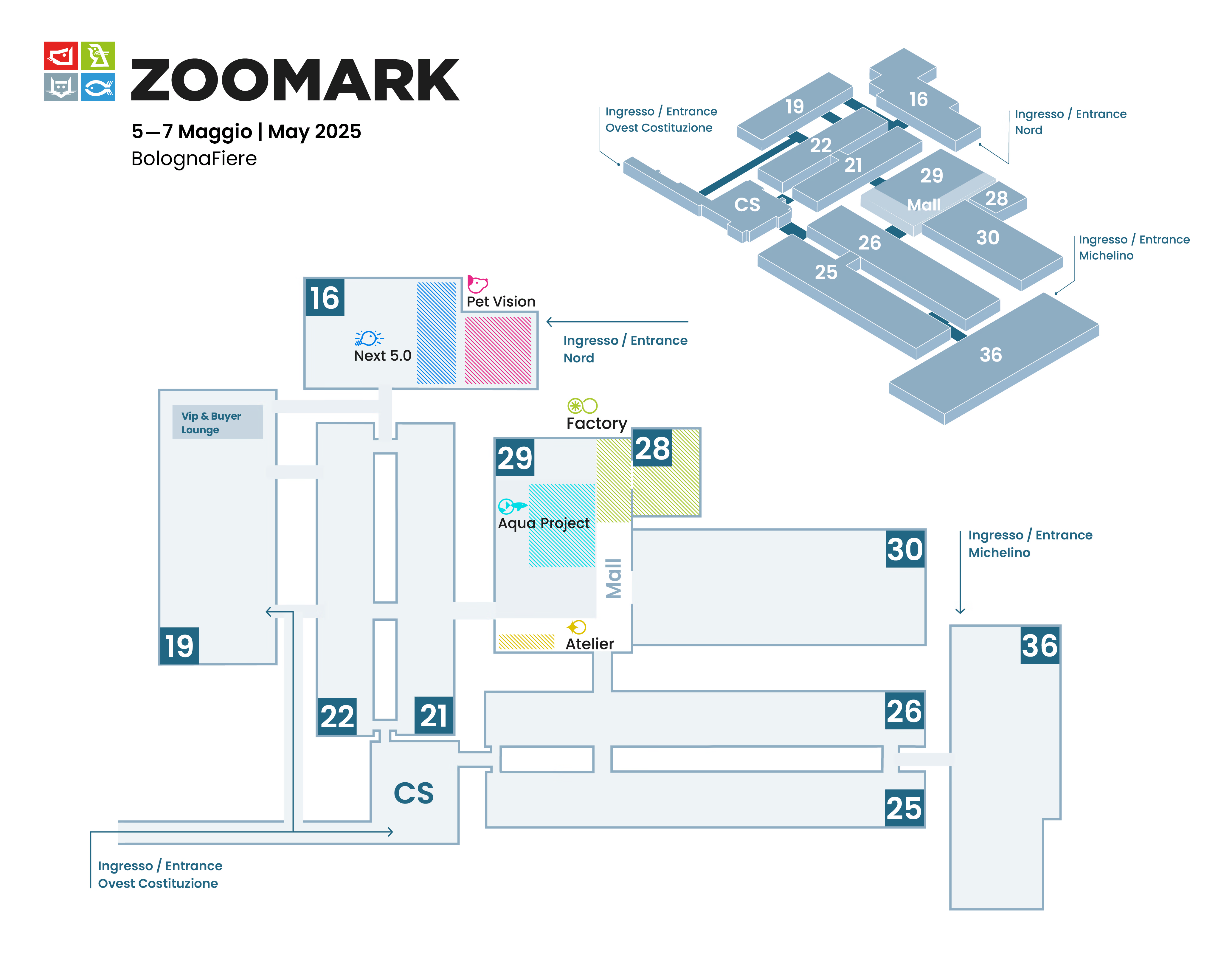 Market Information
Market Information
4+ MIN
03/02/2025
Zoomark 2025 Expands: a 10th Hall Added – and It's Already Sold Out!
The 2025 edition, taking place at BolognaFiere from 5th to 7th May, has already reached full capacity, prompting organisers to expand the exhibition layout.
With the addition of extra space, the event is set to break new records, accommodating a growing number of exhibitors, estimated at 1,500, and visitors.
Luisa Bersanetti, Exhibition Manager of Zoomark, states:
"The expansion of Zoomark 2025's exhibition layout is a direct response to the extraordinary demand from the industry, with fully booked halls marking a new record in terms of exhibitor numbers, exhibition space, and international reach. This achievement highlights Zoomark's great appeal within the global pet industry, a sector that continues to thrive. We are confident that a larger event, enhanced by dedicated thematic routes and special areas, will ensure a steady flow of high-quality visitors, providing exhibitors with unparalleled business and networking opportunities."
An Expansion Reflecting the Growth of the Pet Industry
With the addition of a 10th hall, the exhibition space now covers an impressive 90,000 square metres, responding to the increasing demand from leading international players and emerging pet brands.
The event will feature industry leaders, innovative start-ups, and rising brands, all showcasing cutting-edge solutions for pet care and well-being.
The global pet market continues to show strong growth. In 2024, global sales increased by 7.2%, reflecting rising consumer spending on pet welfare. This positive trend makes Zoomark the ideal platform for companies looking to seize new business opportunities and strengthen their position in international markets.
Premium Business Matching
Zoomark 2025 is further enhancing its global reach through the International Buyers Programme, an exclusive initiative dedicated to connecting exhibitors with top-tier buyers.
The event is expected to attract 30,000 attendees, including buyers from over 120 countries, with significant delegations from Europe, the United States, Asia, and the Middle East.
Already, 200 top buyers from more than 30 countries have joined the International Buyers Program, designed to facilitate targeted business meetings. This initiative, developed in collaboration with ICE Agency, focuses on key pet industry markets and will involve distributors, specialist retailers, chain stores, and e-commerce professionals, ensuring a highly qualified and relevant audience for exhibitors.
Thanks to the B2Match matchmaking platform, buyers and companies can plan their meetings in advance, optimising their trade show experience.
Thematic Paths and Special Areas
Bigger, yes – but also more structured and efficient. The new Zoomark 2025 layout has been redesigned to enhance exhibitor-visitor interactions, featuring intuitive pathways that create a dynamic, seamless experience for professionals attending in Bologna.
Visitors will be able to follow three thematic routes:
Italian Style – showcasing companies that manufacture in Italy or feature Italian design.
GreenMark – dedicated to sustainability-focused companies.
Tech for Future – highlighting exhibitors at the forefront of pet industry innovation.
These three routes will act as a guiding thread for professionals, helping them navigate the show more effectively and focus on the most relevant industry trends.
In addition, five special areas will showcase emerging trends and innovations, fostering business opportunities and industry advancements:
Next 5.0 – a dedicated pet-tech space, featuring start-ups and established companies presenting advanced technology solutions for pet health and safety.
Pet Vision – a spotlight on recently launched products and market trends, accompanied by an innovation award for the most groundbreaking solutions.
Aqua Project – focused on the aquarium and terrarium industry, featuring dedicated training sessions for specialised retailers.
Factory (NEW) – an area entirely dedicated to the pet supply chain, from raw materials to production processes.
Atelier (NEW) – a showcase of craftsmanship and excellence in pet well-being and comfort.
The Ultimate Hub for Professional Development & Training
Zoomark 2025 will also serve as a leading forum for discussions on key industry challenges, including sustainability and digital transformation.
Over the three-day event, experts and businesses will share insights and forecasts, providing visitors with a deep dive into the pet industry's future trends.
As a trendsetter and incubator for innovation, Zoomark is the ideal place to decode the latest industry shifts, explore consumer demands, and discover game-changing innovations.
Save the Date: 5th-7th May 2025!
Don't miss the pet industry's most anticipated event of the year – online ticket sales open in the second week of February!
For more information: www.zoomark.it
Zoomark is the b2b pet food and pet care trade show hosted in BolognaFiere from 5th to 7th May 2025. For 21 editions it has been an international meeting point between pet industry manufacturers and distributors, and the ideal place to build relationships, catch up with the latest news and network with global professionals in search of new partners and business opportunities.
Source: Zoomark
 Market Information
Market Information
5+ MIN
30/01/2025
Paws and Reflect: 2025 Pet Trends in a Post-Pandemic World
It seems like everyone had a 'pandemic puppy' or a 'quarantine kitten,' right? With stay-at-home orders and the flexibility of remote work, many people took the plunge and added a furry (or scaly or feathery) friend to their household. Fast forward to today, and pet ownership is facing a few more hurdles. From return-to-office mandates to rising costs, pet ownership is barking up a different tree. In fact, pet owners are now 40% less likely to add a new pet to their pack compared to two years ago.
Our latest report, Paw Power: Pet Purchasing Trends, digs into what's happening in the pet world and how business leaders in the pet industry can keep wagging through these changing times.
Is the pet industry growing or shrinking?
Spoiler: pretty pawsitive– at least at first! Between 2021 and 2024, pet sales have grown each year, with a slight dip expected for 2025. Here's the breakdown of sales growth:
2021: +12%
2022: +11%
2023: +10%
2024: +8%
Compare that to other consumer sectors, which have seen declines and only recently bounced back in 2024.
As mentioned, pet owners are more unlikely than ever to add another furry friend to their household pack. The main reasons for keeping the status quo? The price of pet ownership. Three of the top five reasons for being less likely to add another pet center around the cost of pet needs; additionally, spend per unit on pet sector items is up 2.7%. The top reason for holding back on adding another pet in the household is driven by the cost veterinary care and prescriptions (36%). For brands to help alleviate costs, they should look to educate on the benefits of pet insurance in the long-term.
What tradeoffs are pet parents making due to higher prices?
Many pet owners are turning to private label, seeking out bargains at places like Walmart, Dollar General, and Dollar Tree, where prices are lower (though not cat-astrophically so). Private label share of spend in pet food & treats, for example, grew by 0.5 points, while it dropped in pet supplies by 4.7 points.
Interestingly, pet owners are also shifting their shopping habits online and to retailers growing their promotional presence. Amazon and Walmart have been big winners, while traditional pet retailers like Petco and PetSmart have seen declines which have dropped promotional ad blocks by 9% and 35%, respectively. More than three in four shoppers are repeating at Chewy.com, Amazon, and Walmart, while fewer than 3 in 5 shoppers are repeating at Tractor Supply Co., PetSmart, and Petco.
How is Amazon differentiating itself from the com-pet-tion?
Consumers are turning to Amazon for not only good pricing but also a level of convenience that brick & mortar retailers can't offer—the ability to not have to leave the house (or pets).
Amazon has grown sales in the dog (+15%), cat (+19%) and reptile (+9%) categories over the past year, and part of this growth comes from Subscribe & Save deliveries. When shoppers set it and forget it, Amazon wins 13% more share of wallet.
What is the hot new emerging trend for pet owners?
Pets are family, right? And just like us, they need a little TLC for their health and wellness. Pet parents are increasingly growing towards the humanization of pets shown through the pet health category booming. With a 9.2% increase in buy rate, pet wellness is driven by everything from skin care to dental care. Both new and existing pet owners are treating their fur babies to some much-needed pampering.
Keeping canine (and feline) chompers healthy was top of mind for pet owners—1 in 2 shoppers who purchased just one pet health & wellness category purchased a form of pet dental care. Take, for example, brands like HICC Pet and Petlab Co. which have seen significant growth in this space. What makes brands like these interesting is that the products growing in the pet wellness sector center on ideas of digestive health by highlighting terms like probiotics and gut health which further impacts fur and dental health– a trend reflected in the consumer health sector.
However, nearly half (46%) of pet wellness shoppers bought multiple wellness products in the past year showing strong cross-category purchasing once shoppers are in the wellness fold.
Who are the pet wellness warriors?
Older, high-income couples are leading the charge, with Boomers leading the pack. They care deeply about their pets' health– 57% say the best nutrition is crucial for their pets, and 43% want them to eat as healthy as they do.
Boomers are mostly focused on physical wellness (think dental care, grooming products), while younger generations (Gen Z and Gen X) are into mental health enrichment for their pets.
How do brands and retailers capture Gen Z, the next generation of pet owners?
Generation Z is taking the pet world by storm– their pet buy rate grew by 11% vs. YA, compared to just 4% for Boomers+. Gen Z pet owners are 93% more likely to be low-income, 83% more likely to be Hispanic, and 24% more likely to live in urban areas.
Because Gen Z are younger, lower income, and living in rentals, they are 27% more likely to have a cat. They also trend toward pet-specific retailers, spending 55% more at Petco and 52% more at PetSmart compared to all pet owners.
What Does Gen Z Want for Their Pets?
In-store pet-friendly shopping: 30% of Gen Z pet owners say it's super important for a retailer to welcome their pets. A trend noticed more broadly in our Numerator Visions 2025 report.
Pet pharmacy on-site: They want the convenience of picking up medications for their pets at the store (they are twice as likely to want this compared to other pet shoppers).
Cross-species selection: Gen Z wants options for more than just dogs and cats—think birds, reptiles, and more!
The End of the Leash: Tail-End Insights
The pet industry has evolved since the pandemic, but it's far from declining in sales. As pet owners continue to embrace e-commerce shopping and invest in their pets' health and wellness, brands need to stay agile and rethink their retailer partnerships. Traditional pet retailers, especially, will need to rethink their promotional strategies to compete with the likes of Amazon and other retailers that have grown their promotional voice.
As for the future? It's looking like a tail-wagging success, with Gen Z ready to lead the charge toward even more pet pampering. Whether you're in the pet food business, wellness category, or pet accessories, there's still plenty of room to grow.
By: Arden Bezahler, Dana Monac, Elisa Rapadas, Jack Fetick, Shawn Paustian, Stephanie Putt
Source: Numerator
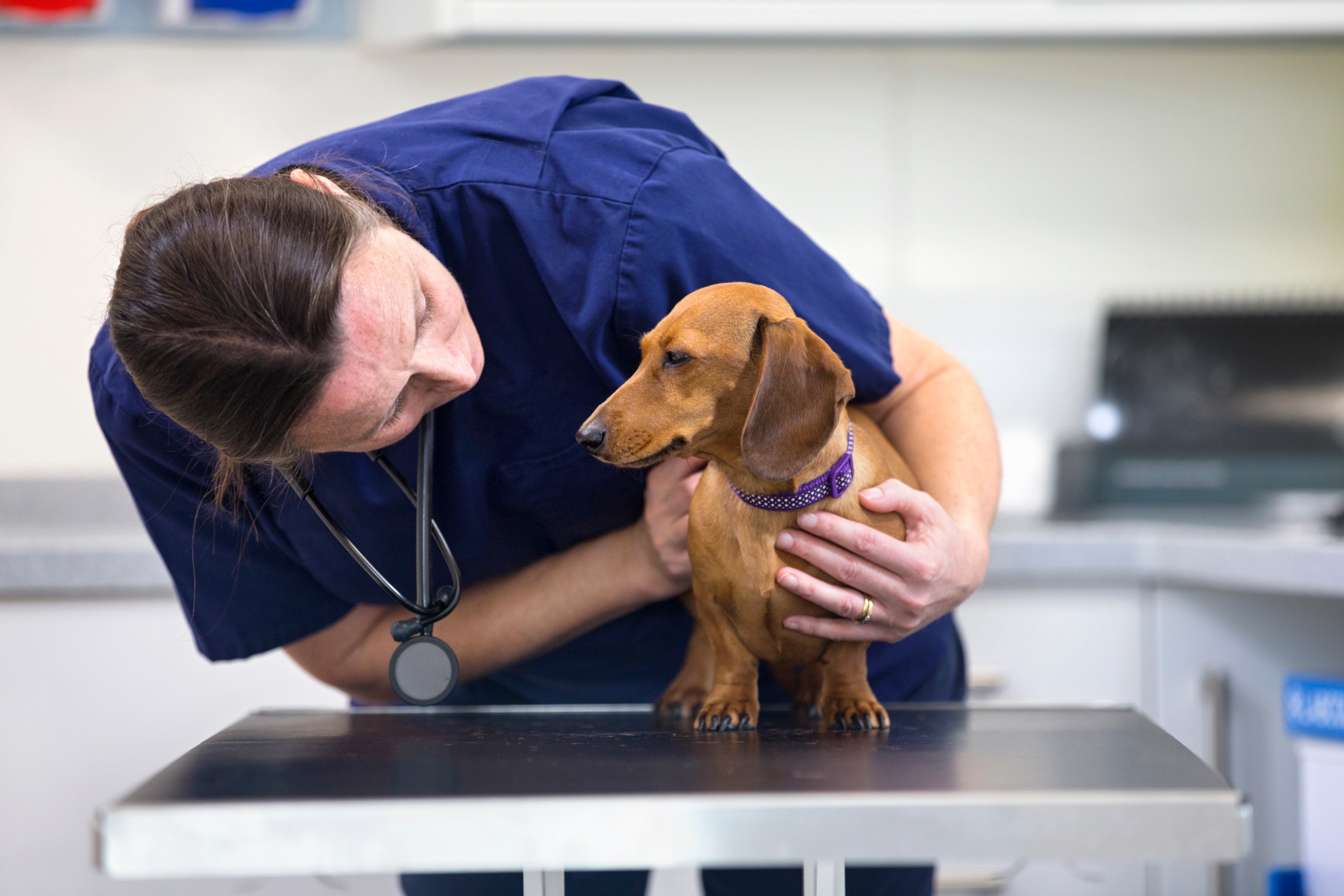 Dogs
Dogs
2+ MIN
29/01/2025
Healthy Skin, Healthy Dogs
As any veterinary professional or dog owner will know, skin conditions – such as canine atopic dermatitis - can drastically affect a dog's wellbeing. From discomfort to trouble sleeping to stress, unhealthy skin can have a huge impact on a dog's overall quality of life.
That is why, at Waltham Petcare Science Institute, we are dedicated to supporting research that could enhance the condition of pets' skin – and, ultimately, improve their lives.
A new Waltham research study published in Nature – has built on our limited understanding of the molecular composition of the canine's skin surface and how these bacterial communities help maintain skin health and prevent disease.
Going further than 'skin deep' with metagenomics
While previous studies have provided us with a broad awareness of the microbial communities present on the skin (using 16S rRNA sequencing), we have lacked a precise understanding of what is there at a species and strain level.
By using metagenomic analysis, and understanding species characterization, this new study has provided a detailed look at the specific species, strains and functions of microbes that live on dogs' skin. And by providing this level of detail, Whittle et al have given the scientific community an accurate and thorough understanding of how the skin microbiome could influence the skin health of dogs.
Four sites, four breeds, 230 types of microorganisms
In the study, the team analysed the skin microbiome of 72 healthy adult dogs, across four distinct skin sites and in four breeds.
Among other important findings, the research identified a core group of 230 types of microorganisms that are consistently found in the skin microbiome of healthy dogs. This suggests that these are responsible for maintaining skin health and play a role in supporting skin barrier function and protecting against skin pathogens.
Importantly, the research team also found that breed and specific skin sites affected skin microbial composition, which suggests that both genetics and physical environment shape the microbial community on a dog's skin.
Micky Whittle, Microbiome Research Manager, Waltham Petcare Science Institute comments:
"At Waltham, we've been leading research into the microbiome for a number of years. Significant gaps in scientific understanding still exist when it comes to the skin microbiome – this study represents an important step forward in building that understanding.'
Towards personalised pet care
The authors also highlight the potential for the development of targeted skincare products for dogs. As the researchers' state:
'As metagenomic databases grow, the potential for personalized pet care solutions based on microbiome health increases.' Whittle, M.J. et al.
Ultimately, the hope is that the identification of core skin microorganisms provides a basis for future therapeutic interventions in treating or preventing canine skin conditions.
Source: WALTHAM, Pet Care Science Institute
 Market Information
Market Information
4+ MIN
27/01/2025
Bühler Acquires Puffing Technology for Feed Applications
Swiss technology group Bühler has acquired innovative puffing technology from CEREX for food, petfood, and feed applications. CEREX, a Swiss manufacturer of machines for food, feed, and non-food applications, originally developed this technology. Bühler explained that this strategic acquisition not only broadens its product offerings, providing enhanced solutions to address the growing demand for healthier and more diverse food options, but leverages the company's full potential to benefit the customer. The technology is versatile and, therefore, applicable to a broad range of products – snacks, ready-to-eat breakfast cereals, confectionery, bakery items, and dairy products.
'The puffing process is a game-changer in how we approach cereal and snack production, offering a broad range of recipe possibilities, including coatings and fillers across many product categories,' said Christoph Vogel, Head of Business Unit Human Nutrition at Bühler. 'The integration of this technology into Bühler's portfolio strengthens our ability to meet the evolving needs of our customers and fosters continued innovation in recipe development.'
Christoph Vogel
The demand for snacks like bars, extruded snacks, nuts, seeds, popcorn, and plant-based alternatives such as puffed oats – particularly among the working population and younger generations – has increased in recent years. The global ready-to-eat snack market size is expected to expand at a compound annual growth rate (CAGR) of 9.7% from 2024 to 2031. Puffing technology can support customers in quickly adapting to these emerging consumer trends, Bühler pointed out.
At a time when cocoa prices are high, the company expressed that the puffing technology also enhances production efficiency by increasing volume and weight, reducing sugar content, and cutting production costs. It therefore supports customers in finding new ways to optimize their processes and maintain profitability, which is crucial for business success.
Puffing is a hydrothermal process that uses heat and pressure to significantly expand the volume of raw materials. The process requires the material to contain 10-14% water and 65-75% starch, with protein and fat levels also affecting the outcome. Puffed products offer several advantages. Their increased volume and porosity make them lighter and crispier – a highly desirable quality for snacks and cereals. The puffing process also enhances digestibility by breaking down starches and improves shelf life by reducing moisture content and preventing spoilage. It also boosts nutritional potential as the product can easily be enriched with vitamins, minerals, or proteins.
Puffed products are considered healthy as they contain no added ingredients – just a single, natural component – and are available as white-label options. This technology can be used in a variety of products. In breakfast cereals, grains like rice, corn, wheat, or quinoa are puffed to create expanded, crunchy textures that are perfect for morning meals. In cereal bars, puffed grains add texture, visual appeal, and a distinctive crunch. The grains are either mixed with melted chocolate or layered on top, depending on the desired structure of the final product, providing a balance of crunch and lightness. Puffing technology is also used in dairy products, such as yogurt and ice cream, where puffed grains like quinoa, rice, or buckwheat serve as crunchy toppings or mix-ins to enhance the eating experience and nutritional value.
MAXIMUM YIELD, MORE ENERGY EFFICIENCY
The new acquisition will not only add value to Bühler's offerings but also contribute to the production efficiency and sustainability of customers' plants, the company emphasized. Bühler's Cerex puffing technology significantly enhances grain processing by achieving maximum yields of over 95%, reducing waste while ensuring uniform puffing across all grains. The system operates with remarkable energy efficiency, consuming 50% less energy compared to similar systems – it utilizes 60 kilowatt-hours (kWh) per 100 kilograms (kg) of product as opposed to 120 kWh. Additionally, it ensures a stable and industrial-grade puffing process compliant with the strictest food safety regulations.
Puffing system reactors: it eliminates the disruptive 'gunshot noise' typical of older systems.
In April 2025, Bühler will open an Application & Training Center at its headquarters in Uzwil, Switzerland, focused on the puffing technology. At the Center, customers will be able to test new product recipes with ingredients such as pulses and develop new processes applying this technology.
'By incorporating advanced puffing technology, we are confirming our commitment to innovation, addressing both current market demands and anticipating future consumer trends,' expressed Vogel. 'Now, we are ready to discuss with our customers the exceptional opportunities for integrating this solution into their plants.'
According to the announcement, the collaboration with CEREX on puffing technology strengthens Bühler's ability to provide innovative solutions in the cereal and snacks market while not impacting CEREX's other services, machine portfolio, or operations. Puffing technology for non-food and non-feed applications remains in the exclusive purview of CEREX.
Source: Feed Additive
 Cats
Cats
1+ MIN
23/01/2025
Study Reveals How Dietary Supplements Can Improve Cat Gut Health
The study, published in Animals, demonstrated that cats supplemented with these ingredients showed better intestinal balance, enhanced immune function, and a healthier gut microbiome compared to a control group. 'We recognise the critical role gut health plays in the overall well-being of pets, especially during dietary transitions,' said Hongfeng Chen, ADM's General Manager of Pet Nutrition in China. 'Our study demonstrates that this combination significantly enhances gastrointestinal health in adult cats by fostering beneficial bacteria and promoting intestinal balance.' The research, conducted over 28 days at the Pet Nutrition Research Center in Beijing, involved 24 cats split into two groups. One group was given a supplement containing the functional additives, while the other was not. Both groups transitioned from a low-protein diet to a high-protein diet midway through the study. The supplemented cats exhibited lower intestinal permeability, higher levels of beneficial bacteria like Blautia, and improved immune markers such as secretory immunoglobulin A (sIgA). Additionally, they maintained a healthier gut pH, likely due to increased production of organic acids by beneficial bacteria. 'This collaborative study rigorously evaluated functional ingredients in cats,' said Dr Siyu Chen, a veterinarian at China Agricultural University. 'With these promising results, we look forward to advancing the nutritional quality and digestive health of pets.' ADM plans to leverage these findings to drive innovation in pet nutrition, offering solutions aimed at improving digestive health and overall well-being. By: Thomas Oakley-Newell Source: Pet Industry News
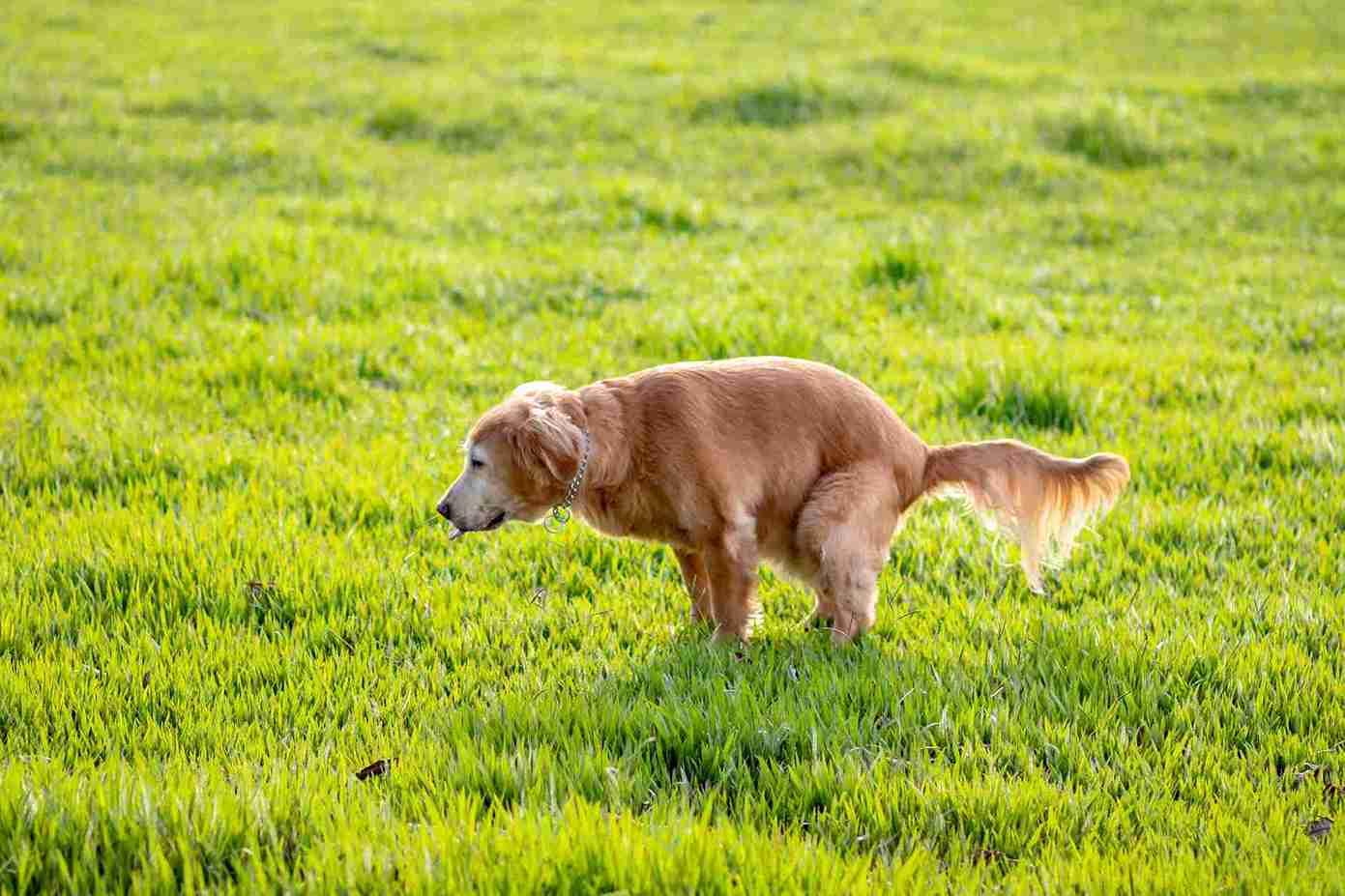 Sustainability
Sustainability
4+ MIN
22/01/2025
Food, Defecation, and Environment: A Glance to Improve the Impact (Part 1)
Pet feces transmit bacterial and parasitic diseases (Cinquepalmi et al. 2013), but there has been little discussion about its impact. With the emerging focus on sustainability to meet the 2030 calendar and the SDL (ONU, 2015), this aspect can be widely considered.
Although there are programs that promote the collection of pet feces in public areas and alternatives to manage this kind of waste, such as composting and anaerobic digestion (Martínez-Sabater et al. 2019), we still do not know its impact, especially those managed in Brazilian homes.
This waste significantly contributes to the environmental fingerprint for pet ownership since nitrogenated waste from defecation —in great numbers and non-neutralized— can be toxic to the environment (Hobbie et al. 2017).
Social media and local governments know this waste harms the environment, but there is not enough scientific data about its real impact. It is necessary to use appropriate research tools to correctly understand its flows and emissions to find the best way to manage and reduce the effects of dog and cat defecation.
Dog/Cat Defecations and Sustainability: Their Relationship
Sustainability involves environmental, social, and economic aspects that ensure resources are available for future generations.
In Brazil, pet feces are commonly thrown away in the sewage system or in the garbage to be collected by governmental programs or leave them in the open air where they decompose.
Water waste is usually treated to reduce pollutant loads of waste; however, feces in the garbage, outdoors, or collected by local governmental programs increase the amount of organic solid urban waste (SUW) that ends up in landfills and is the main responsible for methane emissions.
The aforementioned information means a challenge. The Greenhouse Gas Emissions and Removals Estimates (SEEG in Portuguese) include the following goals in their 2030 calendar: reduce almost 14% of organic waste in landfills, recover 50% of methane generated in these landfills, and improve the recovery of animal waste methane (SEEG, 2022).
In 2023, 2,300 million tons of SUW were generated globally; by 2050, this number will reach 3,800 tons (PNUMA, 2024). Managing this waste cost 252,000-361,000 million dollars in 2020 (Figure 1). In Brazil, around 77,1 million tons of SUW were generated in 2020, with estimated costs of R$ 29,2 billion (ABREMA, 2023). That indicates that the generation of solid urban waste affects the environment, society, and the economy.
In Brazil, almost 50% of SUW is organic waste from pets though the concrete amount is not clear. Documenting these numbers and potential emissions can help to enhance the management of waste and reduce the impact and costs, contributing to the SDLs.
Figure 1: SUW generation in Brazil (2022). Published by ABREMA (2023).
Pet waste and sustainability are also related to the amount of nitrogen (N) and phosphorus (P). These waste and nutrients highly risk most species living on this planet since they are non-neutralized and appear in great amounts. Related to nitrogen, it can raise pollutant gases in the air, reduce vegetal digestion, and pollute urban water. On the other hand, P is essential for animal nutrition and can contaminate fresh water, which is increasingly rare (Rezende et al. 2022).
Due to nutritional and physiological aspects, pets, mainly cats and dogs, can release large amounts of N and P to the environment (Ritchie & Roser, 2020). Dogs are facultative carnivore animals, and cats are obligatory carnivores, which need a diet rich in total and animal proteins (NRC, 2006; Rousseau et al. 2019; FEDIAF, 2021) and, at the same time, have high excretion of nitrogen waste.
As consumers purchase according to the protein level on the label, without knowing pets' nutritional protein and amino acid (AA) needs (Singh et al. 2024), pet food industries commonly formulate food with high-protein levels and with high-quality ingredients that compete with human nutrition (Swanson et al. 2013; Okin, 2017; Su and Martens et al. 2018).
High ingestion of proteins in dogs and cats promotes high AA oxidation to eliminate excess. On the other hand, maintaining body condition score in adult dogs and cats depends on the non-restriction of proteins in food practices (Li and Wu, 2024). In addition, pet fecal and urinary excretion can contain other waste, such as plasticizers (Li and Kannan, 2024), but their effect on the environment and human health are not known.
These factors show the relationship between pet waste and sustainability, highlighting the importance of studying this topic in Brazil. The appropriate characterization of feces and urine impact is a way to cooperate with strategies aimed at mitigating the problem and maintaining the future sustainability of agriculture.
In the second part of this article, we will provide information about the Life Cycle Assessment (LCA), a useful approach to analyze how products and processes impact the environment which includes pet waste production in Brazil, standardizing these processes to help sustainable decision-making.
By: Jéssyka Laura Galdino Costa, Ricardo Souza Vasconcellos (Universidad Estatal de Maringá - Brasil), Fernando José González González (Universidad de la Salle - Colombia).
Source: All Pet Food Magazine
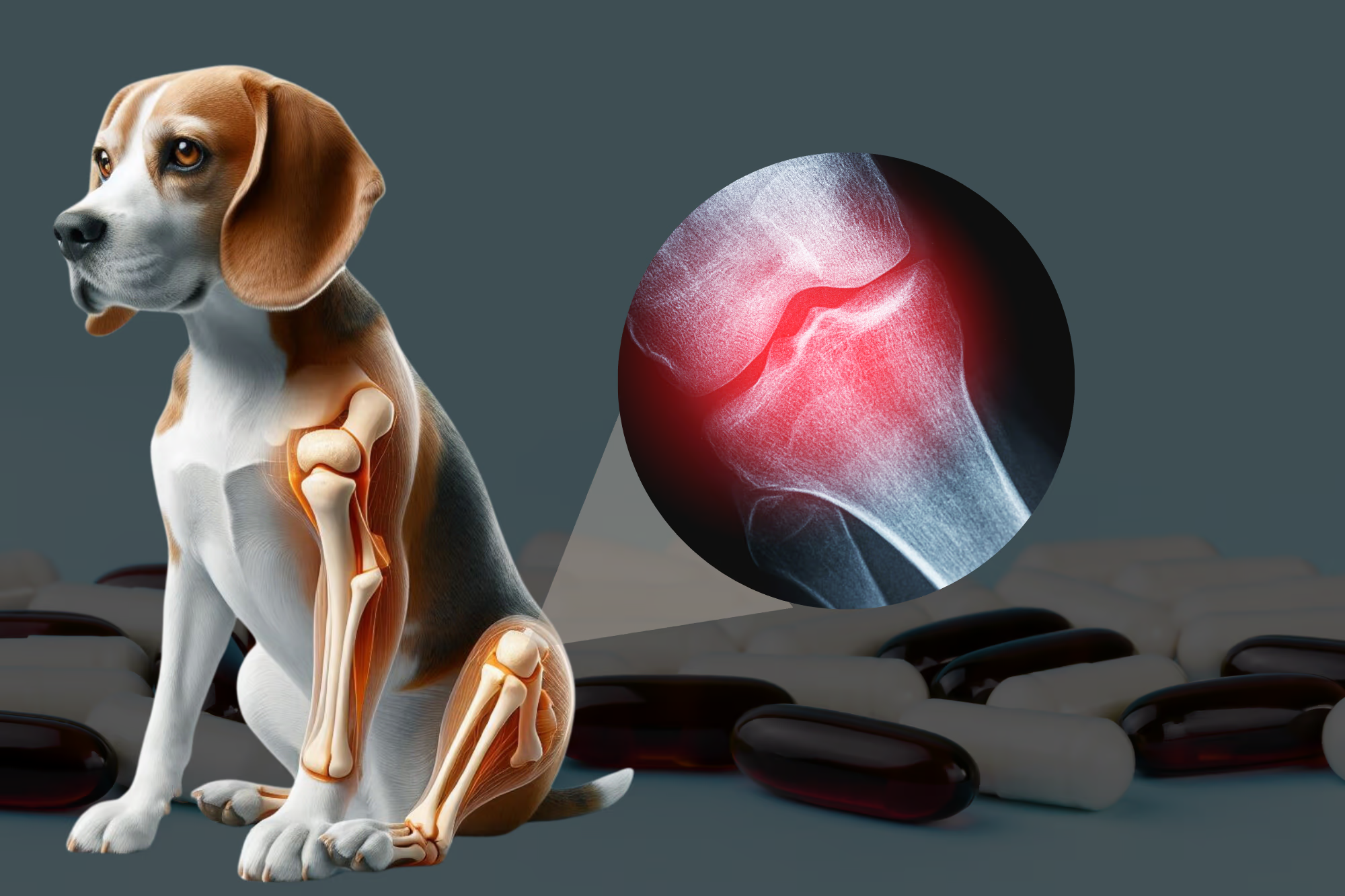 Dogs
Dogs
6+ MIN
21/01/2025
Arthritis in Dogs: The Use of Chondroitin and Glucosamine
Osteoarthritis in dogs is a chronic inflammatory disease that requires nutritional control along with conventional treatment.
It is diagnosed when the animal's mobility is affected and by being a disease without a cure, it should be prevented and controlled (RYCHEL et al., 2010). Dogs with arthritis not only require a conventional treatment but also special nutritional control with nutraceutical food supplements.
Glucosamine and Chondroitin Supplementation and its Results in Dogs are Widely Recommended to Prevent and Treat the Disease
Supplementation of glucosamine and chondroitin is highly recommended by veterinarians to prevent and treat osteoarthritis (RYCHEL et al., 2010). Classified as chondroprotective agents, they are basic components of the cellular matrix and the synovial liquid and contribute to the synthesis of glycosaminoglycans and proteoglycans —building blocks in the cartilage formation (BEALE et al., 2004).
Based on that, several research have been conducted to explain the use of glucosamine and chondroitin when treating dogs with articular problems. Although research show beneficial clinical effects, proof vary according to the function in formulation and additional active principles in the commercialized supplements (BHATHAL et al., 2017).
Articular Anatomy and Arthritis
Cartilage is a conjunctive specialized tissue, mainly formed by an extracellular matrix made up of type II collagen and chondrocytes, among other molecules. In arthritis, the articular cartilage is damaged affecting other structures, such as ligaments, synovial membranes, and meniscus (ARDEN y LEYLAND, 2013; LOESER, 2013). Clinical signs manifestation, e.g. pain and limp, can be related to cytokines and chemokines that work directly on articular nociceptors.
Moreover, they promote neovascularization in articulations and meniscus, where compressive strength and hypoxia stimulate the development of new sensory nerves.
Regarding risk factors, males are more prone than females; this can be related to differences in hormones and the body condition score (HAYS et al., 2007). In addition, neutered dogs develop articular diseases as their sexual hormones, which work as chondroprotective agents, are at lower levels. The procedure is also associated with an increase in weight. Finally, there are breeds prone to develop this condition, such as golden retrievers, Labrador retrievers, Rottweilers, and German shepherds (ANDERSON et al., 2018), because of their high body weight and conformation-related hereditary defects (ASHER et al., 2009).
In general, arthritis is diagnosed when the animal shows modified mobility combined with other risk factors and is rarely diagnosed during the initial stage (MOSHER et al., 2013). These are some of the trials to diagnose the disease: x-ray and computed tomography, along with the medical record and the physical examination of the animal, using a test known as Ortolani's sign (BOHRER, 2002), which consists of flexing the lower limbs, followed by the abduction of the thigh, that allows the evaluation of a cracking noise when moving it.
Nutraceutical Food Supplements Containing Glucosamine and Chondroitin for Arthritis Treatment
Nutraceuticals are food supplements elaborated in purified or extracted ways that are orally administered to provide the necessary compounds to the organism's physiology; its aim is to improve health and well-being (ARONSON, et al., 2017). Being food supplements, formal testing is not required for commercialization, so market access is easier. Therefore, there is a wide range of these products with differences in composition, doses, and the combination of other active principles.
Because of the synergy action of compounds (LIPPIELLO et al., 2000), the combination of glucosamine and chondroitin is recommended for treating and preventing arthritis (MILLIS and LEVINE, 2014) among the available nutraceuticals for dogs. In dogs, it is recommended a 2-6 weeks oral treatment to show clear therapeutical effects (PLUMB et al., 2015), such as reducing the overall pain and increasing the percentage of the neoformed subchondral bone (ELEOTÉRIO et al., 2015).
Research by Silva et al. (2022), evaluated analgesic effects of carprofen, associated or not to the combination of glucosamine and chondroitin, in the treatment of dogs with osteoarthritis. Researchers concluded that animals evaluated with carprofen associated with glycosaminoglycans showed a significant increase in controlling limp.
Moreover, Tudury et al. (2022) evaluated the use of chondroitin-sulfate-based nutraceuticals, glycosaminoglycans, and manganese in preventing intervertebral disc damage in dachshund dogs. It was observed that administrating this supplement in the first year of life reduced the number of disc mineralization in the thoracolumbar spine.
However, due to the difference between the formulations and additional active principles in commercialized supplements (BHATHAL et al., 2017), some studies have not found significant effects of these compounds on osteoarticular diseases in dogs.
It should be noted that when diagnosing it early, physiotherapy is an ally that stabilizes the condition, in addition to the use of nutraceutical. At the same time, hydrotherapy, laser therapy, thermotherapy, and therapeutical ultrasound contribute to physical rehabilitation, increasing the production of extracellular matrix (Canário, 2021).
Table 1. Concentration levels of glucosamine and chondroitin in main studies.
Conclusion
As it is a disease without a cure, it should be prevented and controlled to minimize the animal discomfort. Therefore, it is important to conduct more research to clarify the real influence of using glucosamine and chondroitin when treating dogs with articular problems, contributing to the treatment and the diagnosis of affected animals.
By: Julia Santos Rodrigues, Thainá Batista de Medeiros, Eduarda Lorena Fernandes, Heloísa Lara Silva, Laiane da Silva Lima, Lorenna Nicole Araújo Santos, Renata Bacila Morais dos Santos de Souza, Ananda Portella Félix, Simone Gisele de Oliveira - Universidade Federal do Paraná.
Source: All Pet Food Magazine
References
ANDERSON, Katharine L. et al. Prevalence, duration and risk factors for appendicular osteoarthritis in a UK dog population under primary veterinary care. Scientific reports, v. 8, n. 1, p. 1-12, 2018.
ARDEN NK, LEYLAND KM. 2013. Osteoarthritis year 2013 in review: clinical. Osteoarthritis and Cartilage, 21 (10): 1409-1413.
ARONSON, Jeffrey K. Defining 'nutraceuticals': Neither nutritious nor pharmaceutical. British journal of clinical pharmacology, v. 83, n. 1, p. 8-19, 2017.
ASHER, Lucy et al. Inherited defects in pedigree dogs. Part 1: disorders related to breed standards. The Veterinary Journal, v. 182, n. 3, p. 402-411, 2009.
BEALE, Brian S. Use of nutraceuticals and chondroprotectants in osteoarthritic dogs and cats. Veterinary Clinics: Small Animal Practice, v. 34, n. 1, p. 271-289, 2004.
BHATHAL, Angel et al. Glucosamine and chondroitin use in canines for osteoarthritis: A review. Open veterinary journal, v. 7, n. 1, p. 36-49, 2017.
ELEOTÉRIO, R. B. et al. Chondroitin sulfate and glucosamine in the cartilage and subchondral bone repair of dogs-Histological findings. Arquivo Brasileiro de Medicina Veterinária e Zootecnia, v. 67, p. 325-333, 2015.
HAYS, Laurel et al. Quantitative genetics of secondary hip joint osteoarthritis in a Labrador Retriever–Greyhound pedigree. American journal of veterinary research, v. 68, n. 1, p. 35-41, 2007.
LAMOUNIER, LYSSON RODRIGO et. al. Osteoartrose de quadril em cães e gatos: Revisão. v.17, n.0, p.1-13, 2023.
LIPPIELLO, Louis et al. In vivo chondroprotection and metabolic synergy of glucosamine and chondroitin sulfate. Clinical Orthopaedics and Related Research®, v. 381, p. 229-240, 2000.
Millis DL, Levine D. 2014. Canine rehabilitation and physical therapy. Second edition. Saunders, Philadelphia, p. 784.
Mosher TJ, Walker EA, Petscavage-Thomas J et al. 2013. Osteoarthritis year 2013 in review: imaging. Osteoarthritis and Cartilage, 21(10):1425-1435.
PLUMB, D. C. Glucosamine/chondroitin sulfate. Plumb's Veterinary Drug Handbook (Eighth ed.). Stockholm, Wiscoconsin, USA: Pharma Vet Inc, 2015.
RYCHEL, Jessica K. Diagnosis and treatment of osteoarthritis. Topics in Companion Animal Medicine, v. 25, n. 1, p. 20-25, 2010.
SILVA, L. G.; FERREIRA, G. A. S.; MORAES, P. C. Uso do carprofeno associado aos glicosaminoglicanos em cães com osteoartrite. Revista de Educação Continuada em Medicina Veterinária e Zootecnia do
CRMV-SP, São Paulo, v. 20, n. 1, 2022.
TUDURY, E. A. et al. Efeitos da suplementação com nutracêuticos sobre a calcificação de discos intervertebrais em cães da raça Dachshund. Medicina Veterinária, v. 16, n. 1, p. 25–33, 2022.
 Laboratory
Laboratory
5+ MIN
20/01/2025
Por Josiane Volpato
Technological Advancements Improving the Quality of Pet Food
Although no specific laws characterize industrialized food (Standard, Premium, Super-premium, Special Premium, High-premium, etc.), the quality, research, and applied technologies in their manufacturing and evaluation are crucial to ensure their positioning in the market. This article investigates the steps applied in the research process and the development of food in which science and technology are combined with the extrusion process using NIR evaluation and digestibility tests. Extrusion process The extrusion process has existed for centuries; Joseph Bramah developed the first report in literature in 1797 (England). It was not until 1900 that extrusion began to be used for food manufacturing by the Frenchman Alexandre P. Pigozzi and, in 1954, by the Ralston Purina Company to manufacture dog and cat food. Extrusion is a thermal process that makes the material (powders) go through a die with holes to shape a specific kibble (ball, bones, heart, among others). It is a HTST process (High Temperature-Short Time), the most widely used method for manufacturing pet food, as dry diets are still the most sold. Even being an old process, it always grows along with technology, aiming to meet the needs of the pet food industry and ensure excellence in its production and high-quality pet food. Besides being considered one of the most efficient, the technology offered by extrusion is also very economical for manufacturing dog and cat food, especially in terms of quality and food security compared to other processes. Many extruders in the market aim to satisfy the most diverse process for dog and cat food. Single-screw extruders are the most affordable and used in manufacturing, especially for standard quality in which many formulations are extruded. However, double-screw extruders offer better quality and more options for shaping. Moreover, they can use more ingredients in the formulation, which is advantageous when industries want to diversify their products with Premium and Super-premium food. Research has demonstrated that controlling its thermal or mechanical energy offers considerable benefits in feeding, for example, managing the effect on starch gelatinization by allowing it to reach the large intestine (colon) and act as prebiotics for dogs and cats. Jackson et al. (2020) discovered that identical formulated food processed in extrusion conditions of high and low shearing results in tough starch to dietary digestion, which produces potentially beneficial changes in the gut microbiome by altering starch digestion. Another benefit related to food, Alvarenga et al. (2021) altered the mechanical energy in the extrusion process and found that kibbles produced in low and middle shearing were denser (varying between 296 and 338 g/L) and less expanded than those in high shearing. The pet food industry is constantly seeking innovation. With the high demand for new food, including fresh meat, such as Super-premium, fruits and vegetables, or insect proteins, extruders with advanced technology offer an improvement in the use of thermal energy and a reduction in mechanical energy, enhancing the nutritional quality and satisfying nutritional requirements and realities of each factory. NIRS food evaluation Near Infrared Spectroscopy is a technology widely used in factories to predict the bromatological condition of ingredients in pet food formulation. This technique has gained popularity in recent years with new advances in execution due to the rapidity and agility of results. Since then, this analytic technology has provided factories with rapid analysis of specifications such as the percentage of proteins, fats, ashes, moisture, and pH, among others. With almost immediate results, it assists quality control in making decisions by accepting or rejecting the receipt of raw materials. Pet food factories also use NIRS to update the formulation program database and ensure that the composition matches the end product specifications, the labels, and the specifications of each product in its portfolio. Technological advances make equipment calibration easier and faster for many food and animal ingredient analyses. In addition to macronutrients such as proteins and fats, it is also possible to carry out analysis with near-infrared spectroscopy, e.g., detecting if the sample is contaminated by mycotoxins or biogenic amines or calibrating it to detect adulterations and ensure product approval. Research in other species (Montoro et al., 2023) examined chemical compounds in feces and the coefficients of apparent digestibility of the total tract. Hervera et al. (2012) evaluated the possibility of the NIRS to estimate the energy content in commercial dog and cat food. These studies strengthen the potential to help the analysis, ensuring food quality. Therefore, nutrient composition and digestibility are essential to the qualitative evaluation of pet food since they provide results about the nutrient availability in that diet with a significant impact on animal health. With this goal and ethical guidelines in animal experimentation, that seek to reduce the use of animals in research, many studies evaluate pet food digestibility through the in vitro method, which aims to reproduce apparent digestibility in dry extruded food for dogs and cats. Hervera et al. (2007) studied a two-step multienzyme incubation approach adapted to dogs' digestion characteristics. It consists of two consecutive incubations: the first for 2 hours with pepsin A to acidic pH and the second for 4 hours with pancreatin. After that, the material is filtered, dried, incinerated, and then the digestibility value of the dry and organic matter of the feed is calculated. Using experimental animals to evaluate the nutritional value of food and raw materials for pets requires time, financial investment, and animal management. That is why industries can use the in vitro technique, a reliable methodology to estimate product digestibility with high reproducibility and repeatability. It also examines and probes new hypotheses in nutritional research in dogs and cats. Figure 1: In vitro digestibility technique – Source: compiled by author By: Josiane Volpato and Ingrid Caroline da Silva Source: All Pet Food Magazine References Camp Montoro, J., Solà-Oriol, D., Muns, R., Gasa, J., Llanes, N., Garcia Manzanilla, E., 2023. Predicting Chemical Composition and Apparent Total Tract Digestibility on Freeze-Dried Not Ground Faeces Using Near-Infrared Spectroscopy in Pigs. Animals 13, 2090. https://doi.org/10.3390/ani13132090 Corsato Alvarenga, I., Keller, L.C., Waldy, C., Aldrich, C.G., 2021. Extrusion Processing Modifications of a Dog Kibble at Large Scale Alter Levels of Starch Available to Animal Enzymatic Digestion. Foods 10, 2526. https://doi.org/10.3390/foods10112526 Hervera, M., Baucells, M.D., Blanch, F., Castrillo, C., 2007. Prediction of digestible energy content of extruded dog food by in vitro analyses. J. Anim. Physiol. Anim. Nutr. 91, 205–209. https://doi.org/10.1111/j.1439-0396.2007.00693.x Hervera, M., Castrillo, C., Albanell, E., Baucells, M.D., 2012. Use of near-infrared spectroscopy to predict energy content of commercial dog food. J. Anim. Sci. 90, 4401–4407. https://doi.org/10.2527/jas.2012-5106 Jackson, M.I., Waldy, C., Jewell, D.E., 2020. Dietary resistant starch preserved through mild extrusion of grain alters fecal microbiome metabolism of dietary macronutrients while increasing immunoglobulin A in the cat. PloS One 15, e0241037. https://doi.org/10.1371/journal.pone.0241037
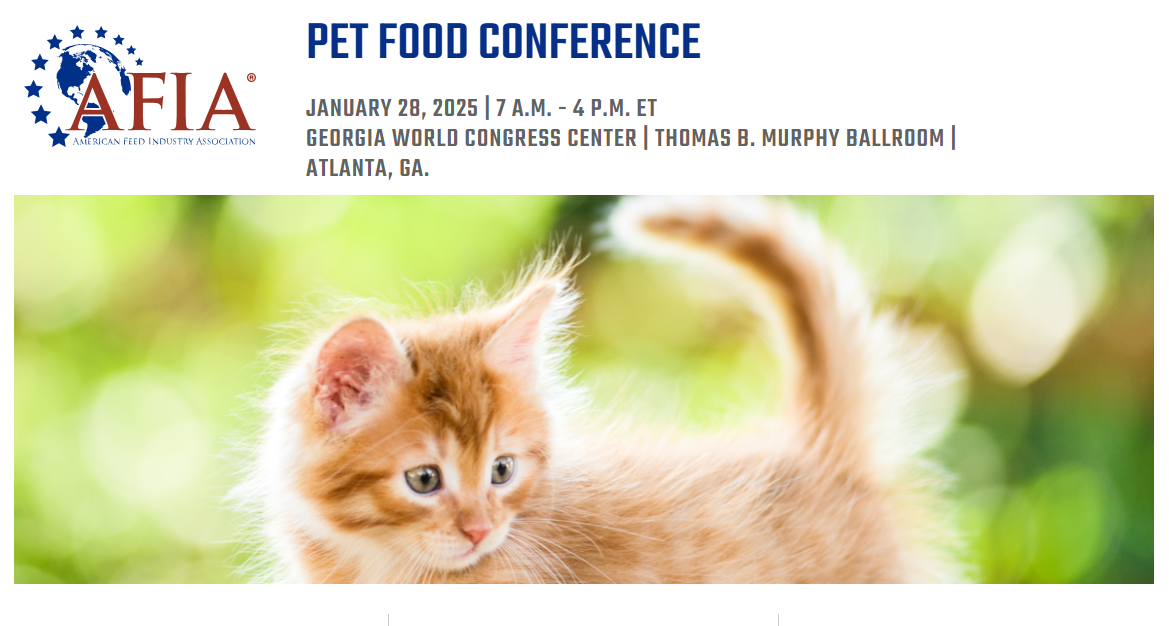 Market Information
Market Information
3+ MIN
17/01/2025
AFIA Pet Food Conference to Focus on Industry Trends, Innovation
'We are thrilled to bring together a dynamic lineup of speakers for this year's Pet Food Conference,' said Louise Calderwood, AFIA's director of regulatory affairs. 'The diverse agenda will provide attendees with insights on topics ranging from innovative marketing trends to important regulatory updates, ensuring everyone will gain valuable knowledge to navigate the ever-evolving pet food landscape.'
This daylong conference will feature presentations and discussions on key topics impacting the industry. Highlights from the agenda include:
Michael Johnson, principal of consumer strategy at BSM Partners, will discuss current marketing trends in pet food.
Rich Kelleman, CEO of Bond Pet Foods Inc., will comment on the use of brewed proteins in pet food.
Erin Perry, Ph.D., professor at Southern Illinois University, will address gaps in working dog nutrition and the related industry opportunities and challenges.
Lara Moody, executive director of the Institute for Feed Education and Research (IFEEDER), will provide the latest data on U.S. pet food consumption.
In addition to these sessions, the PFC will also feature regulatory updates from the Food and Drug Administration and the Association of American Feed Control Officials, as well as the presentation of the Friend of Pet Food award.
The AFIA is also currently seeking current undergraduate, graduate and post-doctoral students to showcase their research at PFC. Applications are due Monday, Nov. 4, and more information can be found at afia.org/PFC2025/students.
For more information, visit petfoodconference.com. To register for PFC, add the event during IPPE registration.
Key Points:
Registration is now open for AFIA's upcoming Pet Food Conference, happening Jan. 28, 2025, in conjunction with the International Production & Processing Expo in Atlanta, Ga.
The agenda features the latest on pet nutrition, including marketing trends, innovative protein sources, new research and regulatory updates.
Students are invited to apply to showcase their research during the conference.
AFIA's Friend of Pet Food award will be presented during the conference.
ABOUT IPPE
The International Production & Processing Expo (IPPE) is a collaboration of three shows - International Feed Expo, International Meat Expo and the International Poultry Expo - representing the entire chain of protein production and processing. The event is sponsored by the American Feed Industry Association (AFIA), the Meat Institute and U.S. Poultry & Egg Association (USPOULTRY).
ABOUT AFIA
Founded in 1909, the American Feed Industry Association (AFIA), based in Arlington, Va., is the world's largest organization devoted exclusively to representing the business, legislative and regulatory interests of the U.S. animal food industry and its suppliers. The organization's membership is comprised of more than 650 domestic and international companies that represent the total feed industry—manufacturers of commercial and integrated feed and pet food, ingredient suppliers, pharmaceutical companies, industry support and equipment manufacturers. AFIA's members manufacture more than 75% of the feed and 70% of the non-whole grain ingredients used in the country. AFIA is also recognized as the leader on international industry developments and holds membership in the International Feed Industry Federation (IFIF).
ABOUT the Meat Institute
The Meat Institute represents the full community of people and companies who make the majority of meat American families rely on every day. The Meat Institute's hands-on regulatory and technical expertise, proactive advocacy, unique convening power, collaboration within and beyond animal agriculture, and sector-leading continuous improvement initiatives drive relationships and resources that ensure meat continues to be a vital, trusted pillar of healthy diets and thriving communities for generations to come. To learn more, visit MeatInstitute.org.
ABOUT USPOULTRY
U.S. Poultry & Egg Association (USPOULTRY) is the All Feather Association progressively serving its poultry and egg members through research, education, communications and technical services. Founded in 1947, USPOULTRY is based in Tucker, Georgia.
Source: AFIA
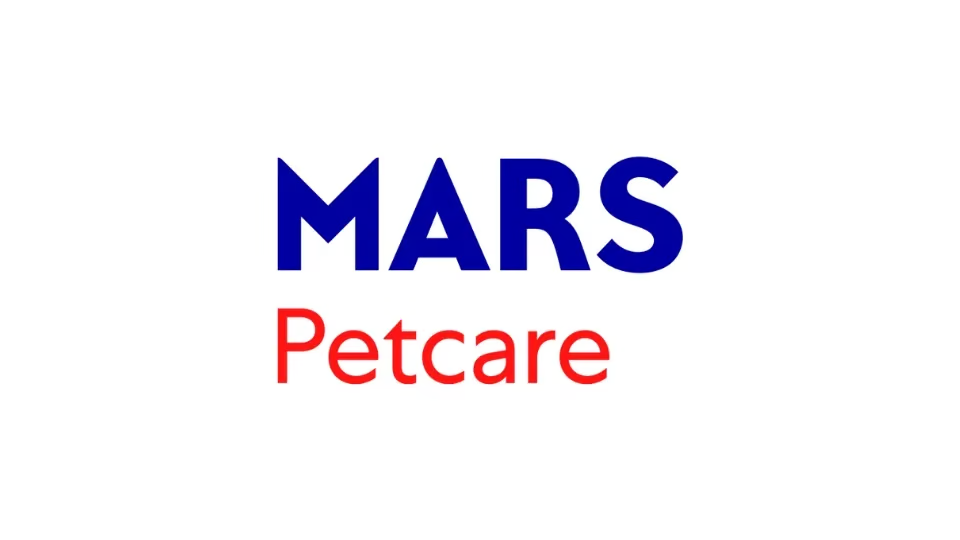 Manufacturers
Manufacturers
1+ MIN
16/01/2025
Mars Petcare Launches 2 New Production Lines at French Facility
Mars Petcare is expanding its European production capacity with 2 new lines dedicated to Royal Canin wet food. According to the company, these lines are expected to increase Mars' production capacity by 44,000 tons –roughly double the site's previous potential. Already able to produce 50,000 tons, the facility could produce up to 600,000 boxes and 1 million pouches per day. The €120 million ($123.5M) expansion began in April 2022. The company's European Royal Canin products had previously been produced in Austria. Mars' facilities are also undergoing longer-term changes. The company aims for its Saint-Denis-de-l'Hôtel facility to be carbon neutral by 2040. Growth strategy According to the company's press release, the products from the French facility are destined for European markets. Mars recently invested millions in a similar expansion in Australia as part of its global production expansion. The country is also home to its first 100% renewable steam-based plant. In 2024, the pet food manufacturer unveiled plans for a $1 billion (€897.1M) investment with the objective to double sales by 2030. By: Dan O'Connor Source: GlobalPETS
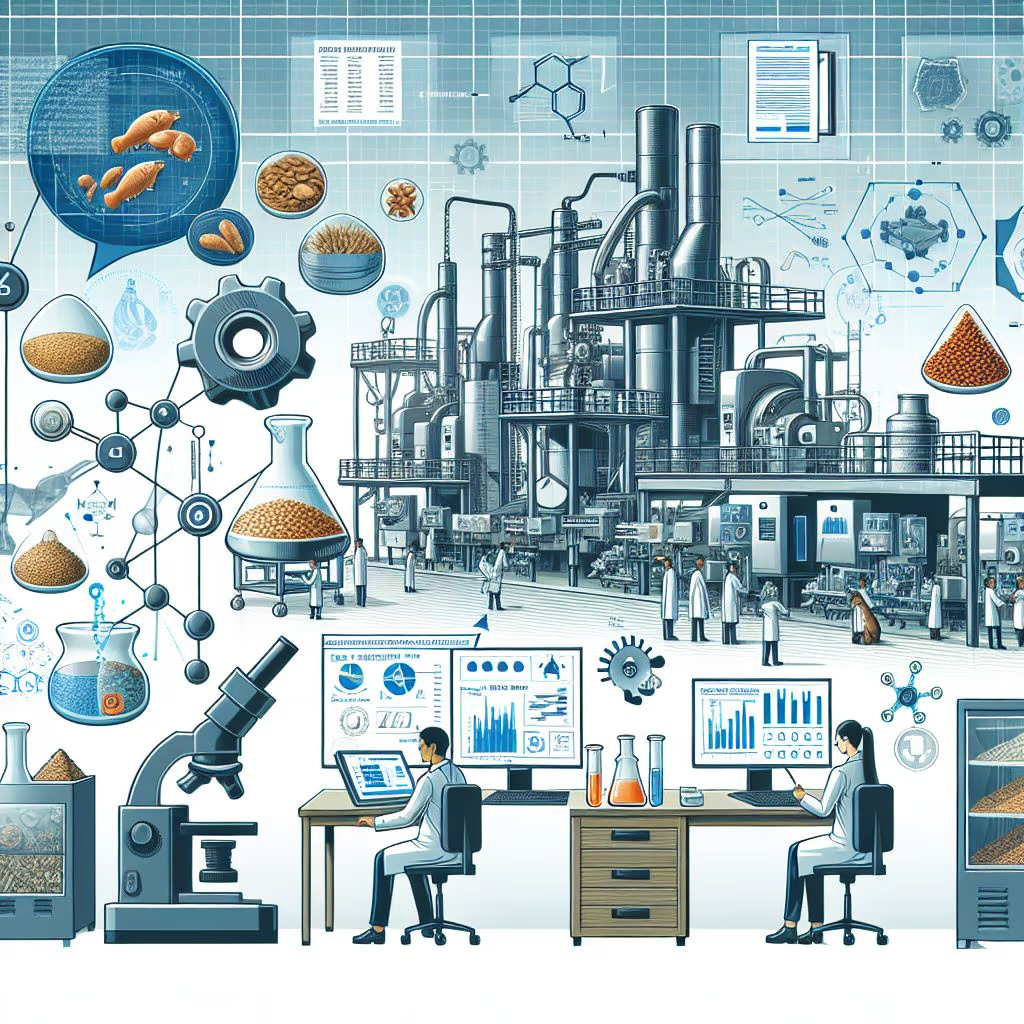 Formulation
Formulation
3+ MIN
15/01/2025
Por Armando Enriquez de la Fuente Blanquet
Science and Technology in Precision Ingredients
On the one hand, science is a systematic process that studies and understands the natural world through observation, experimentation, and analysis. Science is based on a scientific method, which means asking questions, formulating hypotheses to test them, and analyzing the results to develop theories and laws; it aims to build a reliable body of knowledge about how things function in nature.
On the other hand, technology refers to the practical implementation of scientific knowledge to develop tools, systems, and processes that solve problems and satisfy human needs. It includes a wide range of approaches, from electronic devices to industrial production methods as well as medical and communication techniques.
After all, they are deeply interrelated and often drive each other.
Science provides the necessary knowledge to understand nutritional needs and how ingredients affect pet health and well-being.
Animal nutrition: Investigate the specific dietary needs of different pets and how nutrients (proteins, fats, vitamins, minerals) affect their health.
Digestion and metabolism: Study how animals digest and metabolize food and how different formulations can optimize nutrient absorption.
Technology in pet food manufacturing includes methods and tools used to transform ingredients into high-quality pet food.
Extrusion process: Use equipment to make and shape ingredients at high-precision and temperature levels, manufacturing kibbles and other pet food forms.
Drying technology: Eliminate pet food moisture through drying techniques, ensuring its stability and longevity.
Formulation and mixture: Ensure uniform distribution of ingredients by using technologies to mix ingredients with precision.
Moreover, vitamins and trace minerals are essential compounds for pet nutrition, playing a crucial role in their health and well-being. Science and technology have significantly advanced in formulating and incorporating these substances into pet food. Below is detailed information about how technology and science manage vitamins and trace minerals is provided.
Vitamins and Minerals in Formulations
Accurate formulation: Technology allows accurate formulation to ensure that vitamins and minerals are in the correct amounts. Both nutrients measure in ppm (parts per million), so precise inclusion, distribution, and bioavailability are important. Software and mathematical models calculate the exact nutritional needs in each formula.
Vitamins and Minerals Stability
Chemical stability: Vitamins and minerals can break down during processing and storage. Science has developed more stable vitamins, such as vitamin E —in the form of mixed tocopherols— with better oxidation resistance, and ascorbic acid (vitamin C), which can be damaged by the extrusion process and is sensitive to temperature, humidity, pH, oxygen, and light. However, technology has developed chemical structures such as the 'ascorbyl polyphosphate,' which make it resistant to the pet food manufacturing process. Ascorbic acid is released by digestive enzymes in the gastrointestinal tract, so pets ingest the necessary vitamin C (Figure 1).
Figure 1: Ascorbyl polyphosphate and ascorbic acid diagrams.
Microencapsulation: This technology covers vitamins and minerals with a protective coating to prevent their degradation and release them into the digestive tract in a controlled way.
Sources of Vitamins and Minerals
Synthetic vs. natural vitamins: Synthetic vitamins, such as vitamin A and vitamin D3, are used because of their stability and efficacy, while other formulas incorporate natural sources for a complete nutritional profile.
Chelated minerals: Trace minerals combine amino acids and other compounds to make chelates, improving their absorption and bioavailability in the pets' digestive tract (Figure 2).
Figure 2: Available sources of trace minerals in the market.
Absorption and Bioavailability Technologies
Bioavailable forms of vitamins and minerals: The selection of vitamins and minerals easily absorbable is key. For example, zinc in the chelated form is more bioavailable than organic zinc.
Controlled release technology: Some ingredients are designed to gradually release nutrients, which can enhance vitamin and mineral efficiency and absorption.
To sum up, combining science and technology in pet food manufacturing allows the development of safe, efficient, and high-quality products that meet pet nutritional needs. Science provides the required knowledge, while technology employs it to create and control the production process.
By: Armando Enríquez de la Fuente Blanquet
Source: All Pet Food Magazine
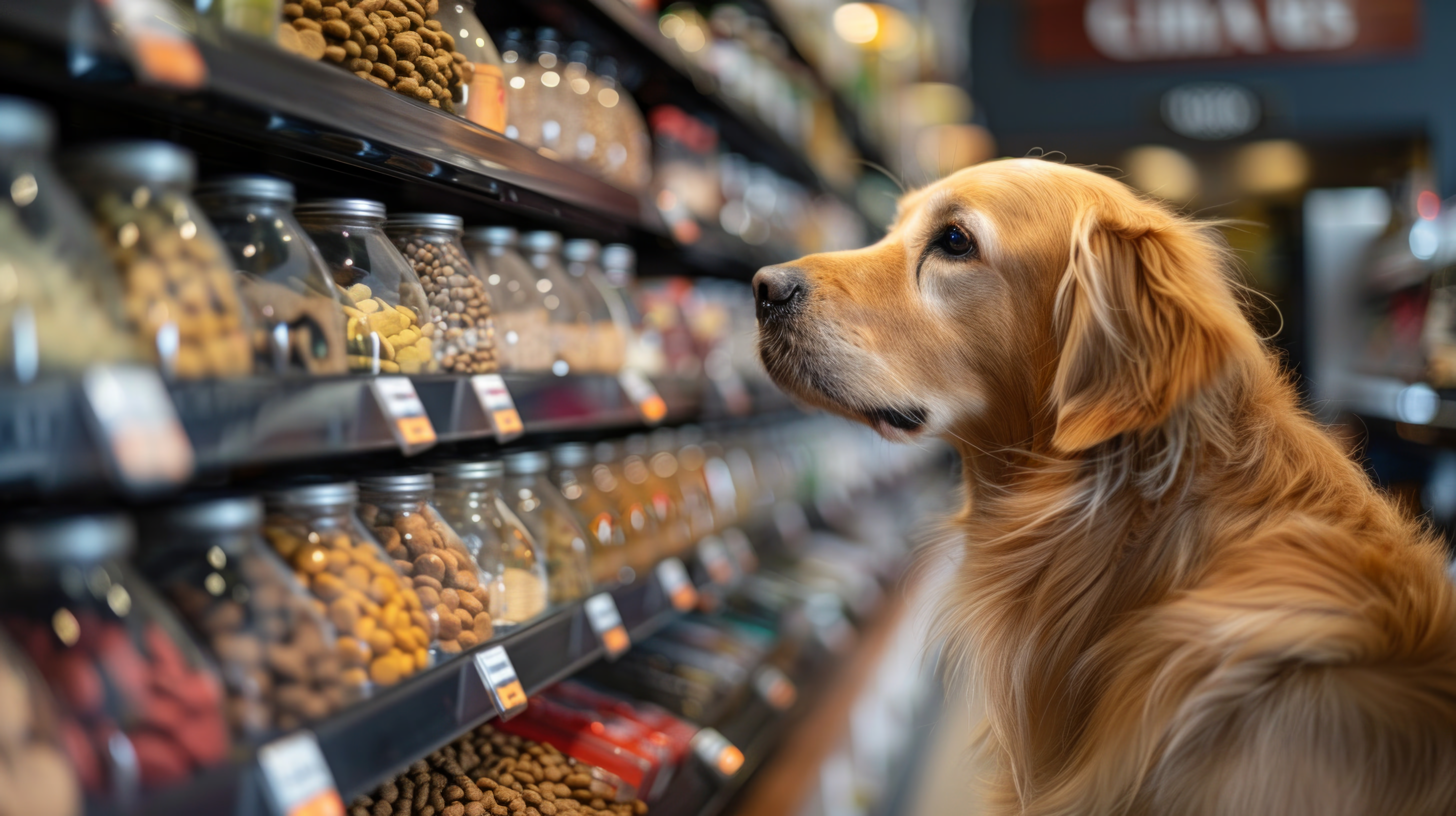 Trends
Trends
3+ MIN
13/01/2025
Por Candela Bonaura
The Conscious Nutrition Era, or With Science Era, Now in Dogs and Cats
A brief scientific point of view about veterinarian nutrition in dogs and cats
Science can be the evil in many stories. However, it allowed us to enjoy long years of joy and company close to our dogs and cats.
The furry friend era requires a real and ethical commitment from science to provide all the support and great knowledge to their needs. Do not we hope they live a longer, quality, and plenty life?
Ranges of knowledge are deeper and deeper, necessary, and useful. But we still have a huge unexplored field since there are no possibilities for organ transplantation, diagnosis, and treatment of many diseases.
In my personal and professional experience, I was lucky to explore a field in constant growth: dog and cat nutrition, or the conscious nutrition era as I call it. Even so, it is not free from myths and false truths that pet owners have on hand. We should recognize that this field is still taking shape, so it is necessary to provide information and experiences based on scientific evidence, and that is the goal for those who want to give a 'nice meal' to each animal.
Science has helped to understand the functioning of the metabolism, diseases and treatments, and animal behavior. It also allowed us to know the relationship and genetic changes between dogs and wolfs, and domestic and wild cats. We cannot deny what we introduced, so our effort is mandatory to fulfill their needs. Dogs and cats, carnivorous animals that have adapted their digestive system to other nutritional sources, still present a big challenge to find an ideal food diet, even more so when they present health problems.
Understanding digestive physiology is a nice beginning to see which nutrients adapt the most to that functioning. We must not forget that animals are a whole; it is important to consider the changes and behavioral modifications since they influence them when indicating a diet or eating habits.
In Argentina, at least 40-60% of the canine and feline population live with obesity, a pathology that has no positive effects on pets' health. Obesity treatment requires understanding the following concepts: nutritional requirements, nutrients, genetic contributions, eating habits, digestive disorders or similar, as well as behavioral habits, such as gluttony and sedentary lifestyle, among others. Only science could provide this information.
On the other hand, in the last issue, we talked about the importance of the three Rs principle, ethics, and animal well-being, associated with research. Nowadays, we focus on results and the impact of science in veterinary medicine and the environment; we hope that it continues growing to provide powerful tools when saving or improving pets' lives and the planet at the same time.
Here are some scientific clippings with information about each species to consider:
Science revealed that cats found the perfect evolution scale. 'They have fixed this in a good way that they simply vary in size. That is why they are perfect in evolution. They do not need variations'.
Curiosities about dogs: they can understand up to 250 words; they are sensitive to sounds because they hear four times as much as humans; their sweat glands are in their paws, and their fingerprints are in the nose.
Science confirmed that their companion boosts people's mood and health.
Science advances and provides information and useful data that allow us to improve their life, or that is why I use science.
By: Candela M. Bonaura
Source: All Pet Food Magazine
 Market Information
Market Information
1+ MIN
10/01/2025
Wenger Manufacturing Announces Death of Company Patriarch LaVon Wenger
LaVon began his career at Wenger Manufacturing in 1955 after studying engineering at Kansas State University. In 1977, he was named President and led the company, along with his cousin Don, to achieve significant success and global reputation. Through the years, LaVon used his intuition and foresight to develop numerous innovations for extrusion cooking technology - especially for pet food processing. LaVon is the inventor on 44 US patents. LaVon lived his entire life in the town of Sabetha, Kansas USA. This is where Wenger Manufacturing was founded in 1935 and continues as the company's global headquarters today. For decades, LaVon dedicated his time and talents to various community organizations to help Sabetha and neighboring towns become great places to live, work, and raise a family. Scott Krebs, President of Wenger Group, said, 'LaVon's fingerprints are evident each day in the various solutions used by Wenger customers around the world. Many of his pioneering concepts over the years have become today's industry standards. His legacy continues to provide an example for us to be caring, fair, and respectful toward others. We are truly blessed to have known and worked with such a wonderful person and we extend our deepest sympathies to the Wenger family.' About Wenger Founded in 1935, Wenger is the world's leading supplier of extrusion cooking systems for use in food, pet food, and aquatic feed processing. Wenger is a wholly-owned subsidiary of JBT Marel Corporation. Source: Wenger Manufacturing
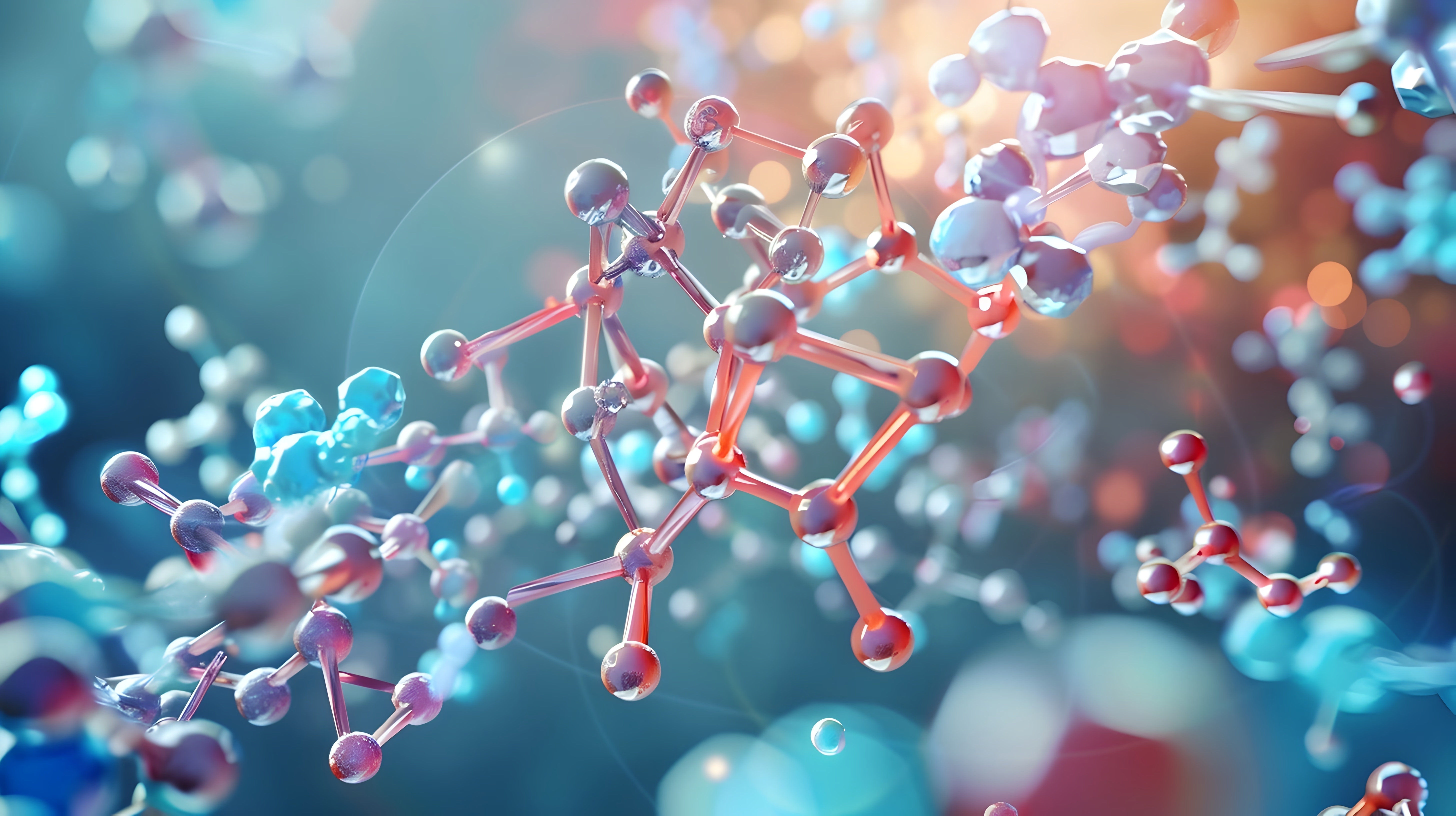 Other microingredients
Other microingredients
3+ MIN
08/01/2025
Por Erika Stasieniuk
Customized Additives: New Science and Technology Transforming the Pet Food Industry
Customized Additives: Competitive Advantages for Manufacturers
Adopting customized additives can be a competitive advantage for pet food manufacturers. By developing them, companies can adapt their formulations to satisfy specific nutritional needs, e.g., supporting joint health, optimizing digestion, or reducing food allergies. That can be a significant difference in a collapsed market, allowing brands to offer distinguished consumer solutions.
In addition, customized additives ensure better flexibility in formulation, which allows fast settings in response to market trends or changes in consumer demands. This adaptability is particularly valuable for companies seeking to be at the forefront of pet food innovation.
These ingredients may have a positive impact on the operational efficiency of industries. As many additives have low inclusion levels (between 0.5% and 0.05% of the formula), there is a significant risk of weighing mistakes when managing different ingredients in small quantities; a way to reduce this risk is to combine many additives in one personalized premix to minimize errors and ensure accuracy in the formulation. It also enhances the end product consistency and increases the company's productivity by simplifying the weighing and mixing process. Moreover, centralizing additives in a personalized solution can reduce operational costs by optimizing the sales process and the ingredient storage, which is more agile and efficient.
However, it is essential to recognize the practical disadvantages of customized additives. Their development requires an initial huge investment, especially in research & development, and efficacy tests. For smaller companies, this cost can be a barrier. In addition, the dependence on specialized suppliers can increase the risk of interruptions in the supply chain, which can affect manufacturing. A sophisticated focus is required to ensure the availability of the ingredients as necessary since running the customized additives inventory can raise logistic complexity.
Science Behind Customization
Additive customization is not a marketing trend. It is based on scientific research that has actual benefits for animal health. Recent research shows that probiotic and prebiotic customized mixes can significantly enhance gut health and immunity in farm animals such as swine and poultry. These concepts have adapted to pet food nutrition, where customized additives adjust to the specific needs of different species and health conditions.
In aquaculture, for example, antioxidant customization has shown positive effects by increasing fish resistance to oxidative stress and extending the shelf life of food. For pet food companies, these scientific principles application allow the creation of products that offer tangible benefits by differentiating their product lines in the market.
When formulating food for dogs with articular disorders, the customization of additives, such as chondroitin and glucosamine, has demonstrated their efficiency in enhancing animal mobility and life quality. Results highlight how science can be an ally in creating innovative and competitive products.
Choosing supplies of customized additives is crucial in efficiency and quality of pet food formulations. Experimented suppliers not only provide necessary ingredients but also carry out detailed evaluations of different additives interactions. That is fundamental to ensure that compounds work in synergy, avoiding possible antagonisms that may compromise the expected benefits. Besides, their experience determines the optimum dose for each additive, ensuring that the end product meets the pet nutritional and health requirements without exceeding the security limits. Partners that understand these matrices increase product effectiveness and add value to the brand, standing it out as a company committed to science and innovation.
Innovation and Differentiation Through Customization
Adopting customized additives means a great opportunity for pet food companies to lead the market with innovative products that meet consumer-specific demands. By integrating science and technology into the development of customized formulations, companies improve animal health and well-being and position them as leaders in innovation.
The future of pet food nutrition is linked to customization; companies investing in this trend will be better positioned to have a larger market share. Additive customization is not a temporary trend but a science-based strategy that has concrete results for pet food manufacturers.
By: Erika Stasieniuk y Ludmila Barbi Trindade
Source: All Pet Food Magazine
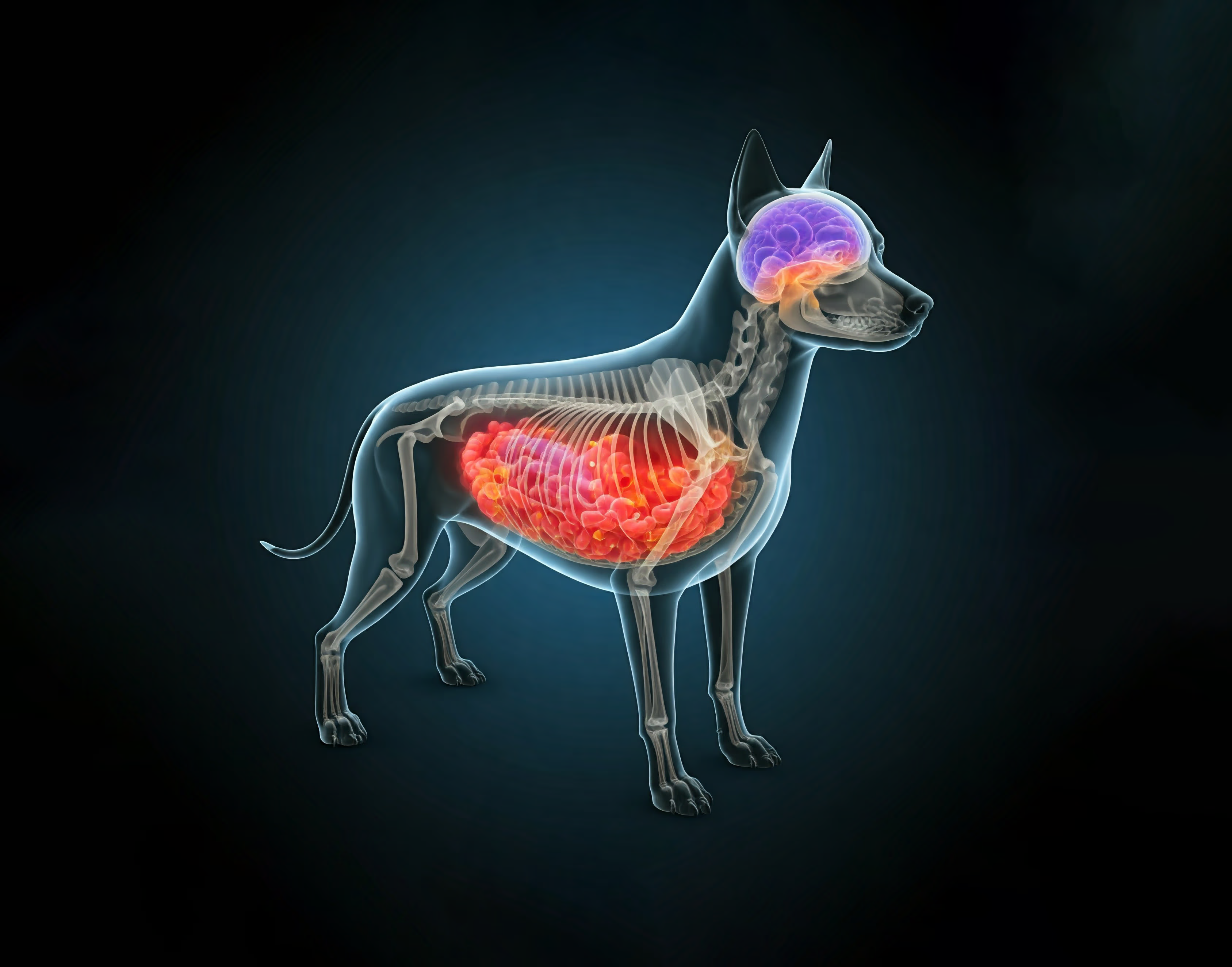 Other microingredients
Other microingredients
5+ MIN
06/01/2025
Por Juan Gómez Basauri, Ph.D.
How Gut Microbiome and Mitochondria Shape Health and Disease
The relationship between the microbiome and mitochondria is a fascinating and complex area of study, reflecting complex interconnections that have a profound impact on various aspects of human and companion animal health, influencing metabolic processes and disorders, immune function, neurodegenerative diseases, and aging. This article will briefly explore the roles of the gut microbiome and mitochondria, their interactions, and their combined effects on human and companion animal health. The microbiome The microbiome itself is the complete set of microorganisms (microbiota), their genes, and the metabolites they produce in the microenvironment (habitat) in which they reside in and on an organism's body (e.g., the intestinal tract, mouth, skin). The gut microbiome per se encompasses a diverse community of bacteria, viruses, fungi, and other microorganisms that inhabit the gastrointestinal tract. These microbes play essential roles in various bodily functions, including digestion and nutrient absorption, immune system regulation, and the production of vital metabolites. Digestion and nutrient absorption Certain gut bacteria produce enzymes that digest complex carbohydrates, such as dietary fiber. This microbial fermentation process produces short-chain fatty acids (SCFAs), like butyrate, propionate, and acetate, which provide energy to colon cells, have anti-inflammatory effects, and help the regulation of glucose and lipid metabolism. Immune system regulation The gut microbiome plays a crucial role in the development and modulation of the immune system. It helps in the education of immune cells and the maintenance of immune tolerance, preventing autoimmune diseases. Metabolite production Gut bacteria produce a number of metabolites which have specific roles, e.g., serotonin and gamma-aminobutyric acid (GABA), which can influence mood and cognitive functions via the gut-brain axis. Mitochondria The mitochondria (Fig. 1), often referred to as the powerhouse of the cell, are double-membrane organelles responsible for producing ATP through oxidative phosphorylation (energy production), involving the electron transport chain and ATP synthase. The energy thus produced is essential for various cellular functions: apoptosis, calcium signaling, the regulation of metabolic pathways, and overall cellular health. Apoptosis Mitochondria play a pivotal role in apoptosis, a programmed cell death mechanism crucial for maintaining cellular homeostasis and preventing cancer. Calcium signaling Mitochondria help regulate intracellular calcium levels, which are vital for muscle contraction, neurotransmission, and other cellular processes. Metabolic pathways Mitochondria are central to the metabolism of carbohydrates, fats, and proteins, converting these macronutrients into usable energy. Redox balance Mitochondria produce Reactive Oxygen Species (ROS) as by-products of oxidative phosphorylation. While ROS play roles in cell signaling, excessive ROS can cause oxidative stress, damaging cellular components. Antioxidant defense Mitochondria possess antioxidant systems, such as superoxide dismutase (SOD) and glutathione, to neutralize ROS and maintain redox balance. Interconnections between the gut microbiome and mitochondria Recent research is beginning to reveal intricate connections between the gut microbiome and mitochondria, highlighting their collective impact on health (Fig. 2). Microbial metabolites and mitochondrial function SCFAs produced by gut bacteria can be used by mitochondria for ATP production. Butyrate, in particular, serves as an energy source for colonocytes and enhances mitochondrial function. SCFAs can activate signaling pathways that promote mitochondrial biogenesis, enhancing mitochondrial function and energy production. Inflammation and oxidative stress Dysbiosis, or imbalance in the gut microbiome, can lead to chronic inflammation, contributing to mitochondrial dysfunction. Inflammatory cytokines can disrupt mitochondrial function, increasing ROS production and oxidative stress. Elevated oxidative stress due to mitochondrial dysfunction can affect the gut barrier integrity, leading to increased intestinal permeability or 'leaky gut' and systemic inflammation, further exacerbating mitochondrial damage. Gut-brain-mitochondria axis Gut bacteria produce neurotransmitters and other signaling molecules that influence brain function. Mitochondria in neurons are crucial for neurotransmitter release and neuronal activity. Dysbiosis and mitochondrial dysfunction are implicated in neurodegenerative diseases, such as Alzheimer's and Parkinson's disease. The gut-brain-mitochondria axis highlights the interdependence of these systems in maintaining neurological health. Gut-liver mitochondria axis Metabolites produced by gut microbiota consisting of short chain fatty acids and bile acids contribute to the regulation of hepatic homeostasis by interacting with mitochondria. The function and dynamics of the liver mitochondria, i.e., metabolism, biogenesis, and redox homeostasis, can be modulated by the gut microbiota. Gut-kidney mitochondria axis Mitochondria injury is the common damaged subcellular organelle in renal, intestinal and cardiovascular dysfunction. Mitochondrial structural and functional abnormalities, including impaired mitochondrial biogenesis, and oxidative stress contribute to the development and progression of cardio renal syndrome. Combined impact on health and disease The interplay between the gut microbiome and mitochondria has profound implications for health and disease. This relationship can influence metabolic disorders, immune function, neurodegenerative diseases, and aging. Metabolic disorders Dysbiosis can lead to altered energy metabolism, promoting obesity and insulin resistance. Mitochondrial dysfunction further exacerbates these conditions by impairing ATP production and increasing oxidative stress. Probiotics, prebiotics, and dietary interventions targeting the gut microbiome can improve mitochondrial function and metabolic health. For example, increasing dietary fiber intake enhances SCFA production, supporting mitochondrial health. Immune function Dysbiosis and mitochondrial dysfunction can contribute to the development of autoimmune diseases. Restoring gut microbiome balance and mitochondrial function can modulate immune responses and reduce disease severity. A healthy gut microbiome enhances the immune system's ability to fight infections, indirectly supporting mitochondrial function by reducing the burden of chronic inflammation. Neurodegenerative diseases Dysbiosis and mitochondrial dysfunction are linked to the pathogenesis of neurodegenerative diseases. Modulating the gut microbiome and improving mitochondrial function offer potential therapeutic strategies. Maintaining a healthy gut microbiome and an optimal mitochondrial function is crucial for cognitive health, particularly in aging populations. Aging Mitochondrial dysfunction and chronic inflammation (inflammaging) are hallmarks of aging. The gut microbiome influences these processes by modulating inflammatory responses and mitochondrial health. Strategies to enhance gut microbiome diversity and mitochondrial function, such as dietary interventions and probiotics, have the potential to promote healthy aging and extend lifespan. Final thoughts The gut microbiome and mitochondria are intricately linked, playing crucial roles in maintaining health and preventing disease. Their interactions influence metabolic processes, immune function, neurodegenerative diseases, and aging. Understanding these relationships opens new avenues for therapeutic interventions, targeting both the gut microbiome and mitochondrial function. By harnessing the power of nutrition, functional bioactives, and lifestyle modifications, we can optimize these systems to improve overall health and longevity for both humans and companion animals. By: Juan Gómez Basauri Source: All Pet Food Magazine
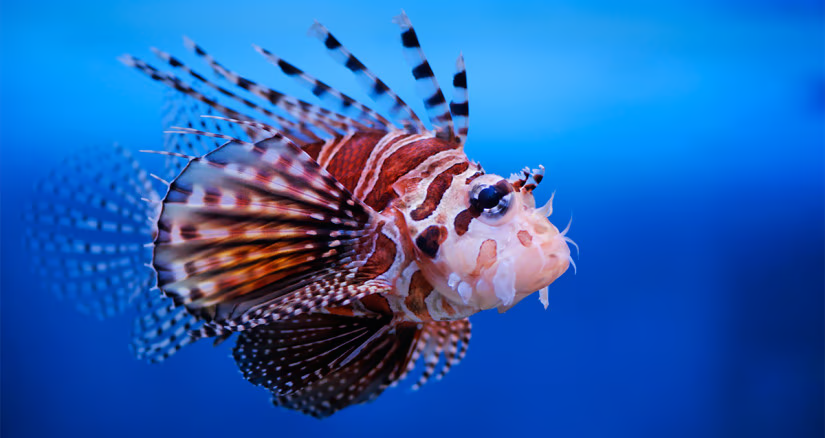 Other microingredients
Other microingredients
4+ MIN
02/01/2025
Riding the Wave: How Alternative Marine Proteins Are Revolutionizing Pet Food
Interest in these sustainable ingredients is steadily increasing, driven by the pressures of the global economy and greater consumer awareness of health and nutrition.1 A prime example is insect-based protein, such as black soldier fly larvae. As more innovative and sustainable proteins enter the market, the emphasis on sustainability and the role it plays in pet food grows.
Environmental and Nutritional Benefits of Marine Proteins
Alternative proteins are gaining attention as promising sustainable food sources for several compelling reasons, particularly their environmental and nutritional benefits. Traditional livestock farming is a major contributor to land degradation, water consumption, and greenhouse gas emissions.2 In contrast, alternative proteins, especially marine-based ones, typically have a lower environmental footprint.3 Marine proteins can be produced with sustainable aquaculture practices and make use of by-products from the fishing industry, turning what might otherwise be waste into valuable, high-quality nutrition.
Emerging Marine Proteins
Shrimp hydrolysate and squid meal are two emerging marine proteins that have garnered recent scientific attention for their improved digestibility and nutrient composition, being high crude protein and total amino acid content in dog food.4 Research also shows no significant difference in palatability between a diet including these ingredients versus a commercial diet, which includes animal meals, vegetables, oils, and fats. In experiment 1, the diet includes 50, 100, or 150 gkg-1 of squid meal and shrimp hydrolysate and for experiment 2, in place of the basal diet. This suggests incorporating these novel marine proteins into pet food products can maintain a satisfied pup while offering nutritional and environmental advantages.
Another notable marine protein is the lionfish. Also known as devil firefish, lionfish are invasive fish that have recently taken over the spotlight due to the ecological harm they inflict on coral reef systems, particularly in the Atlantic and Caribbean regions. Their invasive presence disrupts marine biodiversity by preying on native species, negatively impacting dive and recreational fishing tourism. However, efforts are underway to control their population by harvesting lionfish for human and animal consumption. Utilizing lionfish as a protein source not only aids in mitigating the environmental damage they cause but also offers a sustainable, nutrient-dense protein for pet food. It is a nutritious fish choice, considering the high concentrations of omega-3 fatty acids and lower concentrations of omega-6 fatty acids. It also promotes heart health by raising high-density lipoproteins (HDL 'good' cholesterol) and lowering low-density lipoproteins (LDL 'bad' cholesterol).5 However, sourcing this fish poses challenges due to the labor-intensive process required, as divers must manually harvest them with short pole spears.
Future of Marine Proteins in Pet Nutrition
Marine proteins are rich in the essential fatty acids eicosapentaenoic acid (EPA) and docosahexaenoic acid (DHA), contributing to skin and coat health and cognitive function in pets6. Specific examples of these fish include salmon, sardines, and tuna. The fattier the fish, the higher in EPA and DHA. A whitefish has less fat, which contains lower fatty acids. Moreover, as novel protein sources, particularly shrimp hydrolysate, they may aid in identifying adverse food reactions and help prevent allergic responses from food hypersensitivity, which can appeal to consumers.4
In addition to fish-based proteins, algae have emerged as a highly sustainable alternative protein source. Certain strains, such as Galdieria sulphuraria, are complete proteins containing all ten essential amino acids, similar to traditional animal proteins.7 This makes algae a valuable ingredient for creating balanced pet diets. Additionally, algal oil can replace fish oil without depleting fish populations as it is a rich source of omega-3 fatty acids. This makes algae-based ingredients an attractive option for pet foods, especially those formulated for vegan or vegetarian diets, as they can deliver essential fatty acids without introducing fish or animal-derived ingredients.
Marine Proteins as a Sustainable Solution
In summary, marine proteins offer a range of bioactive compounds that support overall pet health. Incorporating alternative marine proteins into pet food represents a meaningful advancement towards more sustainable diets for companion animals. As the awareness of sustainability grows within human food, packaging, and clothing, the pet food industry is exploring innovative solutions like shrimp hydrolysate, squid meal, lionfish, and algae to reduce its ecological footprint. As research continues to support the safety, utility, and sustainability of these ingredients, marine proteins are set to play a pivotal role in the future of pet nutrition, so be sure to do your part and protect the planet for future generations!
By: Paige Lanier
Source: BSM Partners
References
Am JB, Doshi V, Malik A, Noble S. 2023 Feb 20. Customers care about sustainability and back it up with their wallets. https://www.mckinsey.com/industries/consumer-packaged-goods/our-insights/consumers-care-about-sustainability-and-back-it-up-with-their-wallets
The Breakthrough Institute. 2023 March 20. Livestock Don't Contribute 14.5% of Global Greenhouse Gas Emissions. Food and Agriculture. https://thebreakthrough.org/issues/food-agriculture-environment/livestock-dont-contribute-14-5-of-global-greenhouse-gas-emissions
Nunez E. 2021 Sept 16. Wild seafood has a lower carbon footprint than red meat, cheese, and chicken, according to latest data. Oceana. https://oceana.org/blog/wild-seafood-has-lower-carbon-footprint-red-meat-cheese-and-chicken-according-latest-data/
Guilherme-Fernandes J, Aires T, Fonseca AJM, Yergaliyev T, Camarinha-Silva A, Lima SAC, Maia MRG, Cabrita ARJ. 2024. Squid meal and shrimp hydrolysate as novel protein sources for dog food. Front. Vet. Sci.11. doi:10.3389/fvets.2024.1360939.
Lowe A. 2017 Mar 27. 6 reasons lionfish should be your first choice of fish. Lionfish Hunting Lodge. https://lionfish.co/why-eat-lionfish/#.
Rodrigues T, Lourenco AL, Gregorio H, Queiroga FL. 2021. Therapeutic effect of EPA/DHA supplementation in neoplastic and non-neoplastic companion animal diseases: A systematic review. In Vivo. 35(3). doi:10.22873/invivo.12394
Canelli G, Fabian A, Garcia AV, Canziani S, Mathys A. 2023. Amino acid profile and protein bioaccessibility of two Galdieria sulphuraria strains cultivated autotrophically and mixotrophically in pilot-scale photobioreactors. Innovat. Food Sci. & Emerg. Technol. 84. doi:10.1016/j.ifset.2023.103287
 Market Information
Market Information
2+ MIN
27/12/2024
Christmas Shopping Trends: UK Reports Growth in Pet Gifts, With Decline Expected in the US
While the Christmas shopping season is still in full swing, early indications show mixed results. In the UK, retailers Waitrose and John Lewis have released data on consumer trends showing spikes in pet purchasing. Waitrose, a high-end supermarket chain, reported 964% growth in its Christmas pet lines year-on-year (YoY). Shoppers have been gifting their pets higher-quality food this season, according to Nicki Hobbs, Pet Food and Petcare Buyer at Waitrose. 'We have definitely seen our customers looking to trade up into more premium seasonal products for their pets this year,' she tells GlobalPETS. In particular, a trend of buying premium Christmas dinners for pets has been boosting sales. Hobbs cited Forthglade lamb and chicken platters as an example – sales of the natural-branded product are up 343% YoY. According to data from Go.Compare Pet Insurance and MyVoucherCodes, the average UK pet owner will spend £68.20 ($86.60/€82.50) on their furry companions for Christmas. United States In the US, the pet industry may stagnate in this season's holiday shopping despite apparent growth in overall consumer confidence. With the pandemic largely in the rear-view mirror and shoppers getting used to higher prices, it's likely to be a good year for retail. However, the pet industry is not reaping the benefits as strongly as other sectors. A survey published by Deloitte in October found that 39% of households planned to spend their holiday dollars on their pets. That's down 4 percentage points from the same period in 2023. They expect to spend an average of $115 (€110), also down slightly. In the same survey last year, shoppers anticipated spending an average of $118 (€113) on their pets. It's a bad sign for the pet industry's penetration of holiday shopping as consumers get ready to increase their spending after years of belt-tightening. The same report found that optimism is expected to drive sales up by 8% across industries, following a historic 14% increase in spending during last year's holiday season. Germany In Germany, the opposite trend can be seen. Data from the German E-commerce and Distance Selling Trade Association (bevh) found small increases in online pet sales despite a disappointing season for online retailers. According to their research, pet supplies saw a 1.6% growth YoY in online sales in Germany. However, these figures were not adjusted for inflation, which has hovered around 2% in the country over the past year. A fuller analysis of the industry's successes and failures cannot be completed until after the holiday shopping season ends. By: Dan O'Connor Source: GlobalPETS
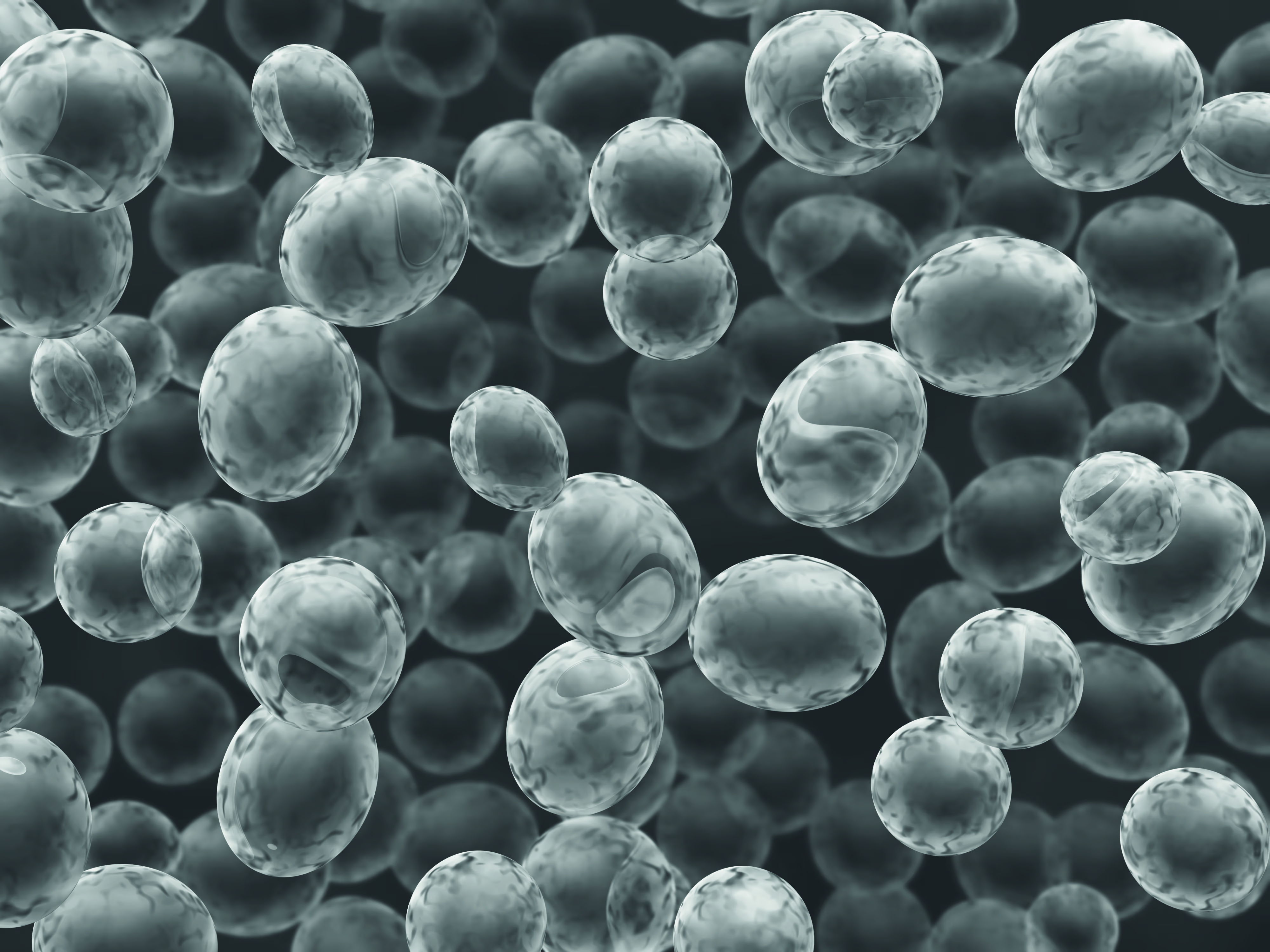 Other microingredients
Other microingredients
8+ MIN
20/12/2024
Protein digestibility kinetics: A key criterion for discriminating between protein sources in pet food (Part 2)
Hydrolyzed yeasts: A source of highly digestible and quickly absorbed proteins
Yeast is an incredible bioengineering factory and a source of valuable nutrients and functional molecules.
At Lallemand, thanks to our extensive yeast expertise, we have spent years working on the screening of different yeast biomasses and on the optimization of their production processes, both of which led to the development of YELA PROSECURE.
YELA PROSECURE is a specifically designed hydrolyzed yeast that offers highly digestible and functional nutrients supporting animal performance, digestive health and feed appetibility while contributing to the feed-protein balance.
YELA PROSECURE: Kinetics of protein digestibility
YELA PROSECURE's kinetics of protein absorption have been analyzed with an adaptation of the Boisen standard method (Figure 4). The pH during the gastric phase, initially at 2.0, was adjusted at 4.5 to be more in line with the real situation observed in young animals where the digestive tract is not yet mature and gastric enzymes are not at their maximal efficacy, leading to a higher pH.
YELA PROSECURE's protein digestibility starts at 77% at the beginning of the intestinal phase (right after the stomach) to 94% after 48 hours. Moreover, YELA PROSECURE is close to its maximum in vitro digestibility after 3 hours of intestinal digestion meaning 90.5% of the protein content of YELA PROSECURE has flash and fast digestibility kinetics and only 9.5% is slow and resistant. The proteins from YELA PROSECURE are, therefore, highly bioavailable for the animals.
Hydrolized yeasts: What are we talking about?
Hydrolyzed yeasts are obtained through yeast cell digestion by both endogenous and exogenous enzymes that are added during the production process to obtain the desired level of lysis. Proteins and nucleic acids are fragmented into small size peptides through a controlled process, which also ensure a high level of functional ingredients and consistency in terms of composition.
EFFECT OF YEAST PROCESSING ON THE KINETICS OF PROTEIN DIGESTIBILITY
The protein digestibility kinetics of YELA PROSECURE was compared to a whole-cell inactivated yeast (Figure 5) with a focus on the three first hours of the intestinal phase since the process of digestion is almost complete by then for Young animals.
In whole-cell inactivated yeasts, no lysis process is applied, and most nutrients (including the proteins) are retained in the cytoplasm of the yeast cell making them less accessible. As shown in Figure 5, their protein digestibility is low right after the stomach (46%) and increases slowly, up to 60% after 3 hours.
In comparison, YELA PROSECURE — a hydrolyzed yeast — has 77% protein digestibility after the stomach and more than 90% after 3 hours within the intestinal phase. Due to the oriented and controlled hydrolysis process, proteins and nucleic acids are fragmented into small size peptides offering highly digestible nutrients. We can conclude the yeast lysis process strongly benefits protein digestibility and therefore nutrient bioavailability in the gut.
YELA PROSECURE PROTEIN DIGESTIBILITY COMPARED TO FIVE OTHER FEED MATERIALS
YELA PROSECURE, a yeast-based product, fish meal, soybean meal, potato protein concentrate and few other feed materials were assessed for protein digestibility and kinetics of absorption based on the Boisen method with an adjustment to the gastric pH as previously explained (Figure 6 and Figure 7).
Protein sources are absorbed differently by animals right after the stomach phase:
YELA PROSECURE's well controlled hydrolysis process makes the protein highly available and quickly absorbed. With a protein digestibility of 77% right after the stomach, we can define YELA PROSECURE as having flash digestibility.
Fish meal has a digestibility pattern of between 56 to 61%. Soybean meal and whole-cell inactivated yeast have a lower protein digestibility at the beginning of the intestinal phase, with 49% and 46% respectively, while the potato protein concentrate is around 40% digestibility.
Did you know? Flash digestibility is important for young animals, especially as their gut is not yet mature and still not able to easily absorb and utilize protein fractions from the diet. Supplying young animals with a flash digestible protein source that is rich in free amino acids and small peptides will help them easily absorb and use those nutrients.
Figure 7 shows that the digestibility kinetics of protein is specific to different feed materials:
Soybean meal protein digestibility increases up to 70% after 3 hours of the intestinal phase.
The kinetics of protein digestibility for fish meal is between YELA PROSECURE and soybean meal, starting with 56% digestibility after the stomach, increasing to 81% after 3 hours in the intestine.
The potato protein concentrate appears to have a slower protein digestibility kinetic over time (52% after 3 hours of the intestinal phase). Being rich in crude protein (77%), the potato protein concentrate will contribute to a high amount of non-digested protein in the animal gut.
Compared to these feed materials, YELA PROSECURE shows interesting kinetics of protein digestibility with more than 90% of the protein digested after 3 hours of the intestinal phase.
As a result, there is a negligeable amount of non-digested protein which reaches the lower gut. YELA PROSECURE is therefore, a valuable protein source which can help reduce the risk of gut dysbiosis associated with non-digested protein. In addition, flash and fast protein digestibility is important in terms of protein functionality with direct and indirect benefits for the animals.
Palatability in Pet food
Some free amino acids are also involved in the mechanism of taste and eating behavior including feed intake, therefore playing a role in palatability.
The comparison of average daily feed intake of dogs with YPS diet to dogs with Control diet (Figure 8) shows that the consumption of the YPS diet was significantly higher than the Control diet.
MATERIAL & METHODS
Duration: 4 days
Animals: 2 groups (Control and YPS) of 20 adult medium size dogs
Diet: premium dry petfood
Control - coated with 1% premium digest
YPS - coated with 1% YELA PROSECURE
YELA PROSECURE has shown the potential to enhance petfood palatability, likely related to the high natural content in specific free amino acids.
Conclusion
To meet growing pet food market demand — and to face the current challenges around global health and digestive care of pets — petfood manufactures and nutritionists are looking for alternative functional protein sources. Hydrolyzed yeasts are a promising and innovative functional protein source to consider, mainly due to the free amino acids and the small peptides obtained from the cracking (lysis) process of the protein. When the hydrolysis process is controlled, yeast has a standardized profile of free amino acids, which plays a positive role in the maintenance of pet gut health, contributing to the petfood protein balance and enhancing palatability. This is particularly of interest when applied to the diets of junior animals or in specialty petfood such as hypoallergenic diets.
By: Francesca Susca -Global Pet Product Manager- and Lisa Saibi -Product manager Yeast derivatives & antioxidants-.
Source: Lallemand Animal Nutrition
References
Boisen S., 1991. A model for feed evaluation based on in vitro digestible dry matter and protein. In:M.F. Fuller (Editor), In Vitro Digestion in Pigs and Poultry. Commonwealth
Agricultural Bureaux International, Slough, pp. 135-145.
Boisen S. and Eggum B.O., 1991. Critical evaluation of in vitro methods for estimating digestibility in simple-stomach animals. Nutr. Res. Rev., 4: 14 1 - 162.
Boisen S., Fernández J.A., 1995. Prediction of the apparent ileal digestibility of protein and amino acids in feedstuffs and feed mixtures for pigs by in vitro analyses. Animal Feed Science and Technology, Volume 51, 29-43.
Cone J.W. and van der Poel A.F.B., 1993. Prediction of apparent ileal digestibility in pigs with a two-step in-vitro method. J. Sci. Food Agric., 62: 393-400.
Duan Y, Tan B, Li J, Liao P, Huang B, Li F, Xiao H, Liu Y, Yin Y. Optimal branched-chain amino acid ratio improves cell proliferation and protein metabolism of porcine enterocytesin in vivo and in vitro. Nutrition. 2018 Oct;54:173-181. doi:10.1016/j.nut.2018.03.057. Epub 2018 Apr 24. PMID: 30048883.
Furuya S., Sakamoto K. and Takahashi S., 1979. A new in vitro method for the estimation of digestibility using the intestinal fluid
Gao J, Yin J, Xu K, Li T, Yin Y. What Is the Impact of Diet on Nutritional Diarrhea Associated with Gut Microbiota in Weaning Piglets: A System Review. Biomed Res Int. 2019
Dec 26;2019:6916189. doi: 10.1155/2019/6916189. PMID: 31976326; PMCID: PMC6949732.
Graham H., Liiwgren W. and Aman P., 1989. An in vitro method for studying digestion in the pig. 2. Comparison with in vivo ileal and faecal digestibilities. Br. J. Nutr., 61: 689-698.
Jayaraman B., 2019. Evaluation of standardized ileal digestible threonine to lysine ratio and tryptophan to lysine ratio in weaned pigs fed antibiotic-free diets and subjected to immune challenge. A Thesis Submitted to the Faculty of Graduate Studies, University of Manitoba http://hdl.handle.net/1993/34498.
McGilvray W.D., Wooten H., Rakhshandeh A.R., Petry A., Rakhshandeh A., 2019. Immune system stimulation increases dietary threonine requirements for protein deposition in growing pigs. Journal of Animal Science, Volume 97, Issue 2, 735–744, https://doi.org/10.1093/jas/sky468.
Metz S.H.M. and van der Meer J.M., 1985. Nylon bag and in vitro technique to predict in vivo digestibility of organic matter in feedstuffs for pigs. In: A. Just, H. Jorgensen and
J.A. Fernandez (Editors), Digestive Physiology in the Pig. National Institute of Animal Science, Denmark, Report no. 580, pp. 373-376.
OECD/FAO, 2021. OECD-FAO Agricultural Outlook 2021-2030, OECD Publishing, Paris, https://doi.org/10.1787/19428846-en.
Pisante M., Stagnari F., A. Grant C., 2012. Agricultural innovations for sustainable crop production intensification. Italian Journal of Agronomy 2012; volume 7:e40
Taverner M.R. and Farrell D.J., 1981. Availability to pigs of amino acids in cereal grains. 3. A comparison of ileal availability values with faecal, chemical and enzymatic estimates. Br. J. Nutr., 46:173-180.
Trevisi P., Melchior D., Mazzoni M., Casini L., De Filippi S., Minieri L., Lalatta-Costerbosa G., Bosi P., 2009. A tryptophan-enriched diet improves feed intake and growth performance of susceptible weanling pigs orally challenged with Escherichia coli K88. J Anim Sci.;87(1):148-56. doi: 10.2527/jas.2007-0732. Epub 2008 Sep 12. PMID: 18791156.
Trevisi P., Corrent E., Messori S., Formica S., Priori D., Bosi P., 2012. Supplementary tryptophan downregulates the expression of genes induced by the gut microbiota in healthy weaned pigs susceptible to enterotoxigenic Escherichia coli F4. Livestock Science 147, 96-103.
Trevisi P., Corrent E., Mazzoni M., Messori S., Priori D., Gherpelli Y., Simongiovanni A., Bosi PI, 2015. Effect of added dietary threonine on growth performance, health, immunity and gastrointestinal function of weaning pigs with differing genetic susceptibility to Escherichia coli infection and challenged with E. coli K88ac. Journal of
Animal Physiology and ANimal Nutrition. Vol. 99 Issue . 511-520. https://doi.org/10.1111/jpn.12216.
Wu G., and Knabe D.A., 1995. Arginine synthesis in enterocytes of neonatal pigs. American Journal of Physiology. https://doi.org/10.1152/ajpregu.1995.269.3.R621.
Wünsche J., Herrman II., Meinl M., Hennig U., Kreienbring F. and Zwierz P., 1987. Einfluss exogener Faktoren auf die prazlkale Nlhrstoff- und aminosiurenre-sorption, ermittelt an Schweinen mit Ileo-Rectal-anastomosen. Tierernaehrung, 37: 745-764.
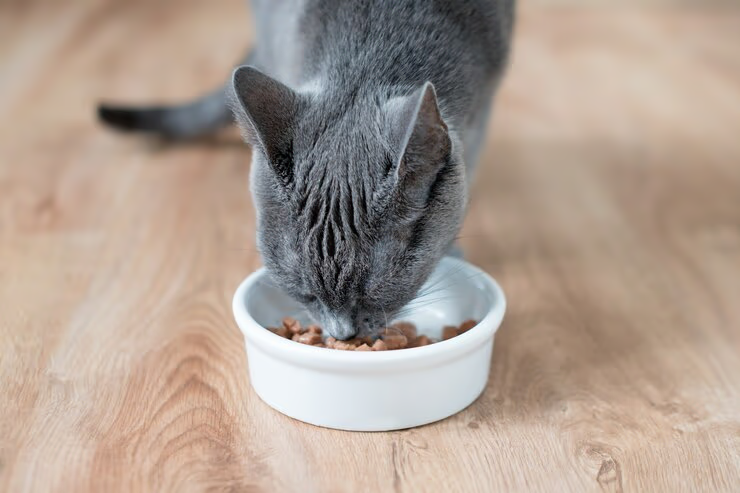 Palatants
Palatants
3+ MIN
19/12/2024
Data-driven Innovation for Robust Product Consistency
Palatants are flavor enhancers used in pet foods to improve their palatability and increase pet acceptance. Developing an effective palatant involves a systematic approach to selecting the best combination of ingredients that provide the optimal aroma and taste for cats and dogs. However, some ingredients have inherent natural variability that must be managed to ensure the robustness and consistency of the palatants.
To address this, an innovative data-driven approach utilizing several analytical techniques can be implemented. Chemical characterization of raw materials—focusing on parameters such as protein, ash, fat, moisture, amino acids, and biogenic amines—is essential for monitoring variability between different types and suppliers of these raw materials.
Ensuring robustness and consistency involves several key steps:
1. Comprehensive Ingredient Analysis: Regularly analyzing raw materials for their chemical composition helps identify and control variability. This analysis includes measuring levels of proteins, fats, moisture, and other critical components.
2. Predictive Modeling: Utilizing advanced predictive modeling techniques can classify chemical fingerprints of raw materials quickly and accurately. These models help in anticipating and compensating for variations, maintaining a consistent quality in the final product.
3. Supplier Evaluation: Continuously evaluating suppliers based on the chemical profiles of their materials ensures that only the most consistent and high-quality raw materials are used.
4. Quality Control Protocols: Implementing stringent quality control protocols at various stages of production helps in detecting and addressing any deviations from the desired chemical profiles.
By integrating these strategies, the development of palatants can achieve higher robustness and consistency, leading to better product performance and increased pet satisfaction.
DATA-DRIVEN ANALYTICAL TECHNIQUES
These techniques involve leveraging data analysis methods to inform decision-making.
PREDICTIVE MODELING FOR CONSISTENCY
The integration of fingerprints data with advanced predictive modeling techniques allows for the classification and comparison of raw materials. Machine learning algorithms can be trained on the chemical fingerprints to predict the quality and consistency of the those samples, ensuring that variations are detected and managed effectively.
IMPLEMENTATION STRATEGY
This step is important to develop actionable strategies for optimizing processes and outcomes.
CONCLUSION
A data-driven approach to managing the variability of natural raw materials in palatants and pet food can significantly enhance product consistency and robustness. By leveraging advanced techniques such as chemical characterization, fingerprint analysis, and predictive modeling, we ensure our products meet the highest standards of quality and palatability for pets.
This innovative strategy not only maintains consistency but also drives continuous improvement in our product offerings. By comprehensively analyzing raw materials, rapidly classifying chemical fingerprints, and implementing predictive models, we can anticipate and mitigate variations, leading to a more reliable product.
Moreover, continuous supplier evaluation and stringent quality control protocols ensure that only the best ingredients are used, further reinforcing the robustness of our palatants. This holistic approach not only meets current quality standards but also sets a foundation for ongoing enhancement and innovation in pet food flavor enhancers.
For more information, contact AFB's Customer Technical Insights team by visiting afbinternational.com/contact or your AFB Account Representative.
Source: AFB International
 Market Information
Market Information
3+ MIN
18/12/2024
Improving in the Path of Science and Technology Innovation
Using technology in the overall production and sales processes of pet food is not a trend but a market differentiation that appeals to pet owners. There are numerous examples of companies leading their markets due to the use of cutting-edge production processes.
Brazil and Argentina: Innovation and technology in premium food
Brazil and Argentina use advanced technologies such as the latest generation extruders and automated production lines to develop high-end products. They improve efficiency and ensure constant and superior quality, aligned with the expectations of strict pet owners. In addition to its commitment to innovation, these countries lead the region in premium food penetration. In these countries, the amount of premium food in their total supply is significantly higher than in the rest of Latin America, making them pioneers in market premiumization.
Mexico: Growth potential in the premium segment
Although Mexico is in the same development line as Brazil and Argentina, there is still a great potential to expand its premium segment leveraged in technology.
Premium products represent approximately 12% of the overall pet food market. Driven by the increasing pet humanization and the demand for high-quality products, this percentage will increase by almost 20% in the country (even in LATAM) in the long term.
The presence of international sellers, like Petco and Amazon, has positively impacted the market. Introducing high-end imported products has driven local brands to follow this trend to raise their standards. In this context, Mexico seems to be a step forward regarding premium offerings compared to the rest of the region; Chile is like Mexico in terms of the variety and functionality of products and ingredients.
Inversions in advanced technology to include ingredients and automated packaging lines allowed Mexican companies to emulate and innovate their premium products, satisfying nutritional-specific needs in the local market.
Technology: The differentiation element in the super-premium segment
Integrating scientific and advanced production technologies is a key market differentiation among the super-premium segment, where pet owners seek products that feed and contribute actively to their health. Leading companies are investing in full-automated technologies in the production chain to provide scientifically proven nutritional benefits.
Key strategies to enhance premiumization by using technology in the pet food area
As the pet food market in Latin America goes by, technology is a determining factor for those companies aiming to stand out in premium and super-premium segments. Implementing effective strategies that integrate advanced technology not only improve product quality but also enhance brand awareness and consumer loyalty. Here are some key strategies that make a difference:
Innovation of process and products: Using advanced technologies is fundamental to developing exclusive formulations that fulfill the market demands, which are increasingly sophisticated and aware of pet health, including the choice of nutrients and the manufacturing process to conserve nutrients.
Expansion of technological capacity: The automation of the process, from mixing ingredients to packaging, optimizes efficiency operating and ensures consistency and high-quality of the product, which is essential to maintain consumers' trust and meet strict standards.
Strategic collaboration: Building alliances with technological institutions and research centers is vital to be updated with advances in animal nutrition. These collaborations can fasten the development of new products and offer access to research that supports affirmations in health and well-being.
Education and technological communication: Using digital platforms to inform about technological advances and premium/super-premium benefits is fundamental. By educating the market about the added value of these innovations, companies can foster greater approval and preference for their products.
Turning point: Technology as an agent of change in pet food
Technology is changing and increasing quality and efficiency standards in the pet food industry in Latin America. Catalyzed by cutting-edge technological innovations and an emerging trend to humanize pets, the premiumization era has new rules for pet food manufacturers. Companies that are ahead of the curve in integrating these technologies are achieving superior products tailored to the needs of modern pet owners. Moreover, they are strengthening their leadership in a highly competitive market, positioning themselves as food manufacturers and pioneers in animal well-being and advanced nutrition. This proactivity not only enhances their presence in the actual market but also prepares them for leading future innovations in an area that continues to expand and diversify at a fast pace.
By: Iván Franco
Source: All Pet Food Magazine
 Automation
Automation
2+ MIN
17/12/2024
The Evolution of the Pet Food Industry: Modernization and Automation of Plants
What seemed like science fiction just a few years ago is now a reality. But how is it possible that so few people can manage an entire shift of pet food production, with all the challenges that come with it? What does it really mean to have a modern and smart plant? And more importantly, how can a plant be designed to maximize efficiency, safety, and product quality?
Here are some key insights to help understand this new paradigm:
Automation of the Dosing Process: The implementation of automatic dosing systems has significantly reduced human error. This ensures that each formula contains the exact amount of ingredients, preventing health issues in pets and economic losses for brands. Precision is critical, as any over-/under-dosing can have undesirable consequences.
Sustainability: Modern plants are designed with sustainability in mind. They use renewable energy sources such as solar panels, efficiently manage water usage and waste, and employ recyclable or biodegradable packaging materials. Reducing energy consumption is another key aspect; energy-efficient technologies, like low-consumption transport systems, help make plants greener. Moreover, in terms of social sustainability, odor control to avoid disturbances to neighbours is a standard that must be met.
End-of-Line Automation: The latest generation of highly automated and flexible packaging and palletizing machines adapt to different packaging formats and production volumes. This allows plants to quickly respond to changing market demands without sacrificing efficiency. Automated inspection and quality control systems ensure that every product meets quality standards before being packed, minimizing the risk of product recalls and protecting the brand's image.
Real-Time Quality Control: Smart plants feature advanced systems that monitor each stage of production in real-time, from start to final product disposition. These systems verify parameters, such as moisture, water activity, density, and temperature, ensuring they remain within optimal safety and hygiene ranges.
Artificial Intelligence and Data Analytics: AI helps predict demand, manage inventories, and optimize the supply of raw materials, reducing waste and costs. With this technology, plants can quickly adapt to market needs, optimizing their performance.
At Clivio Solutions, we offer comprehensive consulting for the design of modern, efficient, and sustainable plants. Our personalized approach is based on understanding each client's operational needs and strategic goals. From process optimization to the selection and integration of cutting-edge technologies, we help ensure that each plant is ready to maximize its performance while minimizing its environmental impact.
Finally, by focusing on operational efficiency and a flexible, scalable design, we ensure that facilities can quickly adapt to changes in demand or technologies, avoiding high investment costs in the future.
Are you ready to take your plant to the next level? Contact us today and discover how we can help you design a smart, modern, and sustainable plant that meets your needs and goals. Together, we can make the future of pet food production a reality.
By: Clivio Solutions
Source: All Pet Food Magazine
 Other microingredients
Other microingredients
3+ MIN
16/12/2024
Protein digestibility kinetics: A key criterion for discriminating between protein sources in pet food (Part 1)
Introduction
The search for innovative protein sources is on the rise as a result of increasing global food consumption and consumer concerns about sustainability, animal welfare, and strain on agricultural land. In line with the humanization trend, pet owners are likely to select a pet food based on their own dietary preferences. Moreover, the increased awareness of the importance of proper nutrition has led pet owners to become more and more careful when looking at pet food labels. Clean label is amongst the top trends in the pet food market and seems to be driven by the perceived link between health and naturalness. Consequently innovative protein sources are of great interest in the Pet Industry as a way to meet the growing market demand for pet nutrition.
Proteins: The importance of digestibility and absorption kinetics
Proteins are biological macromolecules made up of amino acids. Protein bioavailability is strongly related to its amino acid composition, size, and mass range. Big proteins, proteinassociated molecules and nucleic acids have lower digestibility compared to free amino acids and small peptides, which have been exposed to a multiple nitrogen hydrolysis process that makes them more bioavailable (Figure 1).
The digestion process is complex. It is driven by enzymatic activities and is pH dependent. In monogastric animals, this process starts in the stomach where protein denaturation occurs due to pepsin activation. In the duodenum, pancreatic and intestinal wall enzymes continue the digestion process, breaking down the proteins. The absorption of amino acids, dipeptides and tripeptides occurs in the jejunum. The large intestine is the site of microbial fermentation, where short chain fatty acids (SCFA) are produced.
Supplying animals with a protein source that is already processed and rich in free amino acids and small peptides helps ensure better absorption in the gut.
Protein digestibility of feed materials is an important factor for nutritionists, but it does not reflect the timing of absorption in the gut. The kinetics of protein absorption should be considered in addition to protein digestibility. It allows nutritionists to properly assess the quality of the protein source. Many properties and functionalities of proteins are related to their absorption kinetics. The kinetics of protein absorption helps categorize the protein fraction according to the speed of absorption. Four categories can be defined as flash, fast, slow and resistant along the digestive tract (Figure 2).
Did you know? Indigestible proteins are used as a substrate for undesirable bacteria in the gut, inducing proteolytic fermentation.
Ultimately, it may lead to diarrhoea due to microbiota dysbiosis (Jung Gao et al., 2019). Therefore, the higher the protein digestibility, the greater the protein source for animals from a digestive standpoint.
Kinetics of protein absorption: How is it measured?
Several in vitro methods simulating the digestive processes have been developed to estimate the protein digestibility and the kinetics of absorption.
For example, the Boisen standard method (Boisen and Fernandez, 1995) is very accurate in measuring in vitro protein digestibility, which is calculated from the difference between nitrogen in the raw material sample and undigested residue measured at different time points of the intestinal pase (Figure 3).
Did you know? In most cases, validation of the methods is based on the relationship between in vitro results and values of apparent digestibility at the fecal or ileal level (Furuya et al., 1979; Metz and van der Meer, 1985; Graham et al., 1989; Cone and van der Poel, 1993). However, endogenous losses of proteins at the ileal level might have a great influence on in vivo digestibility while in vitro digestibility reflects the real digestibility of proteins and amino acids (Boisen and Eggum, 1991). Since in vitro digestibility does not take into account endogenous losses, the apparent ileal digestibility can only be predicted accurately from in vitro measurements, after correcting for the endogenous losses.
These losses may be influenced by a variety of factors, especially the fiber content in the diet (Taverner and Farrel, 1981; Wünsche et al., 1987). Alternatively, a considerable part of this variation may be explained by the amount of undigested dry matter at ileal level (Boisen, 1991).
By: Francesca Susca -Global Pet Product Manager- and Lisa Saibi -Product Manager Yeast derivatives & antioxidants
Source: Lallemand Animal Nutrition
 Market Information
Market Information
1+ MIN
13/12/2024
Canadian biotech company opens insect production plant in Halifax
The Nova Scotia-based biotech firm has launched a new commercial black soldier fly larvae (BSFL) farm on the outskirts of Halifax. Full operations are anticipated by Q4 of 2025. The 108,000-square-foot facility will be capable of converting 36,000 tons of food by-products and waste into high-quality protein for animal nutrition. The new factory will leverage artificial intelligence, robotics and predictive analysis to elevate the potential of BSF and meet the growing demand for sustainable protein sources. Pet food applications The new farm can produce over 9,000 tons of wet BSFL protein or approximately 3,000 tons of dry protein annually, which will also be available to the pet food industry. Oberland Agriscience confirmed to GlobalPETS that it is already actively engaged in 'productive' discussions with pet food players. This project emphasizes a circular economy model, with BSFL production supporting animal health and environmental sustainability by offering a low-carbon protein alternative. Furthermore, BSFL frass, a nutrient-rich co-product, will be used as a natural soil amendment because it enhances the soil microbiome. By: Muskaan Gupta Source: GlobalPETS
 Dogs
Dogs
2+ MIN
11/12/2024
Fermented Foods: The Missing Link in Your Dog’s Gut Health
The Science Behind Fermentation During fermentation, beneficial bacteria break down complex compounds, making nutrients more bioavailable. This process creates natural probiotics, enzymes, and short-chain fatty acids that support digestive health. These compounds are particularly valuable for dogs, whose ancestral diet included partially fermented digestive contents from prey animals. Benefits Beyond Basic Nutrition Fermented vegetables offer more than just vitamins and minerals. They enhance immune function, improve nutrient absorption, and help maintain healthy gut flora. The fermentation process also reduces anti-nutrients and creates natural preservatives, making nutrients more accessible to your dog's digestive system. Safe Introduction and Portion Control Begin with tiny amounts — just 1/4 teaspoon per 20 pounds of body weight. Common safe options include fermented carrots, cabbage (sauerkraut), and green beans. Always start with one variety and observe your dog's response before introducing others. Ensure vegetables are finely chopped to prevent choking. Preparation and Storage of Fermented Vegetables for Dogs Choose organic vegetables and ferment them separately from human batches to avoid seasonings. Use filtered water and high-quality sea salt. Store ferments in glass containers in the refrigerator, and always use clean utensils. Properly fermented vegetables can last several months when refrigerated. Common Concerns and Solutions While fermented foods are generally safe, some dogs may experience initial digestive adjustments. Start slowly and increase gradually. If your dog has a history of histamine sensitivity or specific health conditions, consult your veterinarian before introducing fermented foods. Creating a Balanced Approach Incorporate fermented vegetables as a supplement to a balanced diet, not as a primary food source. They work synergistically with other whole foods to support optimal health. Consider them as functional foods that enhance rather than replace regular nutrition. Conclusion: Moving Towards Optimal Health By incorporating carefully prepared fermented vegetables into your dog's diet, you're tapping into an ancient wisdom that modern science continues to validate. This small dietary addition can lead to significant improvements in your dog's digestive health and overall vitality. Source: Animal Wellness
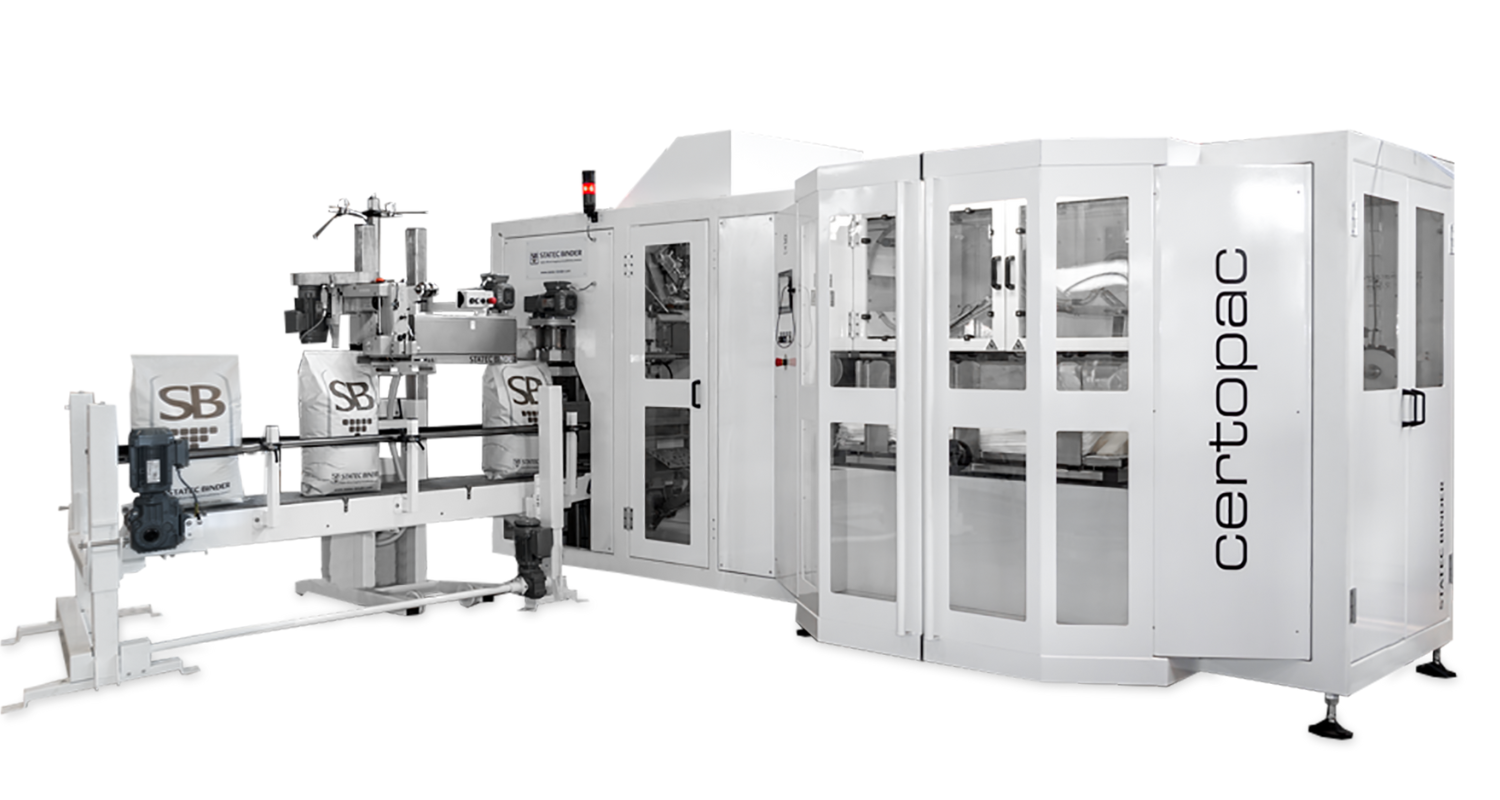 Packaging
Packaging
4+ MIN
10/12/2024
Reliable packaging & palletizing of bulk materials with STATEC BINDER machines
The history of STATEC BINDER goes back to 1978, when the first packaging system of the parent company Binder+Co AG was realized —in 2008 the joint venture was founded under the name STATEC BINDER. Thanks to the continuous optimization and further development of the proven technology since then, the company is now one of the leading suppliers in the high-performance packaging industry. Packaging systems from STATEC BINDER The Austrian packaging and palletizing specialist focuses primarily on flexibility and innovation. All packaging systems are characterized by high quality and precision. The product portfolio ranges from packaging systems for open-mouth bags, FFS packaging machines, BIG-BAG filling stations, bag closing systems and scales to palletizing systems for free-flowing bulk goods. Products from a wide range of industries can be processed, such as the petrochemical, chemical, agricultural, food, animal feed, minerals and fuel industries. The proven packaging systems impress with their high efficiency and performance and contribute to greater value retention, cost-effectiveness and optimization of the customer's packaging process. The systems are also of high quality and reliable; the use of high-quality materials and the possibility of modernizing all machines means that they have a very long service life. The Austrian company therefore focuses on the implementation of high-tech, individual and high-quality all-in-one concepts, which are tailored to the individual product requirements and plant conditions of the various customers. Packaging machines for open-mouth bags The PRINCIPAC, CERTOPAC, ACROPAC and CIRCUPAC packaging machines for open-mouth bags are suitable for polyethylene (PE), woven polypropylene (PP) and paper bags with a filling weight of 5 kg to 80 kg. Up to 2400 bags can be filled every hour. The packaging machines for open-mouth bags are suitable for all types of free-flowing bulk goods. With additional equipment, powdery products such as flour can also be bagged. Depending on customer requirements, the packaging machines for open-mouth bags are designed for low, medium and high production capacities. The durable systems enable a high level of product protection, improved shelf life and filling to precise dimensions. Form-Fill-Seal packaging machines The product portfolio also includes the SYSTEM-T FFS (Form-Fill-Seal) machine for bag processing from tubular film and the SYSTEM-F vertical FFS machine for bag processing from flat film. Both packaging systems are suitable for bagging all types of free-flowing bulk goods. The SYSTEM-F is particularly suitable for packaging moderately free-flowing or powdery products. The FFS machines can fill up to 2800 bags per hour with a filling weight of 5 - 50 kg. BIG BAG filling station The BIG BAG filling station from STATEC BINDER enables the safe filling of bags with a filling weight of 500 - 1500 kg. Up to 150 bags can be filled every hour. The machines are adapted to customer requirements depending on the desired filling capacity and degree of automation. In addition, the systems enable maximum weighing accuracy and precision and are also sturdily built. Palletizers The palletizers from STATEC BINDER impress with their top performance as an ideal addition to the packaging systems or as stand-alone machines. With the high-level, gantry and robotic palletizer, the perfect solution is found for every customer to enable the best possible and most efficient palletizing of bags or cartons. As with packaging machines, the various palletizers are suitable for a wide range of industries. The focus is on bringing together complex systems so that the respective product can be placed on load carriers or pallets as quickly and cost-effectively as possible. The palletizing systems are also individually adapted to the customer's requirements. Both the gentle handling of the packages and the optimal and stable appearance of the palletized load units are the basis of STATEC BINDER's palletizing technology. Customer Service In addition to the high-quality and efficient high-performance machines, the packaging specialist is also characterized by its unique, worldwide customer service after the purchase of a system. Complete customer satisfaction is the top priority here. Customers should be able to rely on being well looked after not only before and during the purchase, but also after delivery of a machine, and therefore receive sound advice, a high level of service expertise and support in all areas. STATEC BINDER's global Customer Service team supports customers with the highest level of expertise and impresses with many different services, such as spare parts delivery, modernization & optimization of machines, customer training and much more. 'STATEC BINDER's philosophy is clear. Even though we primarily deal with packaging and palletizing systems, our aim is to provide our customers with the best possible advice, to find the perfect solution for them and to provide them with the best possible support even after they have purchased the system. This is the only way we can be a strong and reliable partner,' Josef Lorger, Managing Director. For more information visit our website at: www.statec-binder.com/en By: STATEC BINDER Source: All Pet Food Magazine
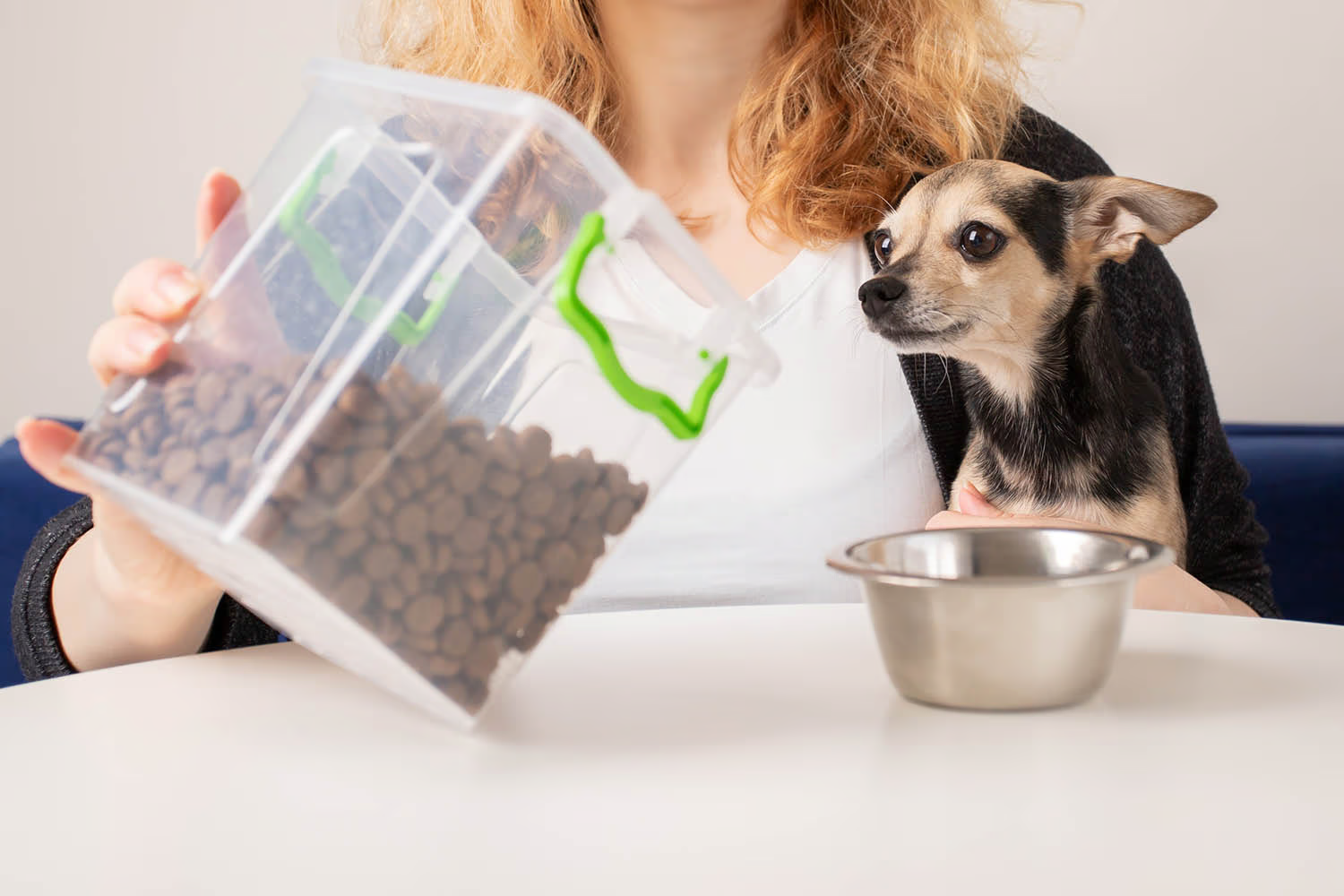 Sanity
Sanity
2+ MIN
09/12/2024
How To Handle And Store Pet Food
PFI members take many steps to support making products that are safe for both pets and the family members who handle pet food. When preparing pet food and treats at home, pet lovers can continue the culture of safety by following standard kitchen hygiene practices in pet food handling and storage to help keep all members of the household safe. Some steps include: As with making any meal in the kitchen, clean counter surfaces after preparing a bowl of food. Wash your hands after handling food, treats and toys. Keep food bowls dry and clean and provide fresh water daily. Where and how pet food is stored can make a big difference in keeping food safe. Here are some tips for proper pet food handling and storage: Check the package: Examine packaging before purchasing to ensure it is clean and hasn't been damaged with a rip or hole. Store securely: Remember, pet food is food. It should be stored in ways that are similar to how human food is stored. Store unopened wet and dry pet food in a cool, dry location. It is not recommended to leave the bag on the floor in the garage or outside. Clean containers: Wash and dry the storage container between each bag of food and check for damage and insect activity. Keep it fresh: When possible, store dry food in the original bag and within a plastic or metal bin with lid. Wet or fresh food can be covered and stored in the refrigerator according to label guidelines. If you have questions about a specific product, please make sure to contact the manufacturer. Source: PetFood Institute
 Market Information
Market Information
4+ MIN
06/12/2024
The History of Pet Food
A Long-Standing Relationship Research suggests that dogs were domesticated 16,000 years ago, and possibly were keeping company with humans for more than 30,000 years. By 2000 BCE, humans were giving consideration into what to feed their dogs. Roman poet and philosopher Marcus Terentius Varro wrote a manual on farming, 'Farm Topics,' that advised providing dogs with meat and bones, and barley soaked in milk. Near the end of the 14th century, Gaston III, the eleventh Count of Foix Count in Southwestern France and an avid hunter, wrote a book in which he described how his beloved greyhounds were to be cared for. This included reference to what they were to be fed: bran bread, some of the meat from the hunt, and if the dog was sick, goat's milk, bean broth, chopped meat or buttered eggs. In common households during the middle ages and through the mid-19th centuries however, little consideration was given to feeding dogs, as a dog's diet was much like that of its owners, consisting of whatever owners could spare, such as knuckles of bone, cabbage, potatoes, onions and crusts of bread. In the mid-1800's, a dog or cat's diet may have been more slightly more varied in cities where it was common for people to purchase horse meat for their pets, as working horses would die in the city streets. Since then, dogs and cats have become an integral part of our households, and the scientific understanding of pet nutrition and food safety has advanced to help better protect the health of four-legged family members. Pets as Companion Animals With the Industrial Revolution and rise of the middle class in the 19th century, families with disposable income began to keep domesticated dogs and cats as companion animals – rather than just as working animals. Businessman James Spratt introduced the first commercially-prepared pet food in England in approximately 1860. After seeing dogs being fed leftover biscuits from a ship, Spratt formulated the first dog biscuit: a mix of wheat meals, vegetables, beetroot and beef blood. Spratt's business venture was a success, meeting a new market demand and selling to English country gentlemen for sporting dogs. A British public company took over Spratt's formula and production began at a U.S. operation in about 1890. Additional companies began to develop their own recipes for biscuits and dry kibble, using the current nutritional knowledge of the time period. Canned dog food, 'Ken-L Ration,' was introduced in 1922. Its main ingredient was horsemeat, which was considered an acceptable ingredient source at the time. Our understanding of and relationship with horses has since evolved, and as they have become pets, there is no longer a market for horse meat. An Evolving Understanding of Pets and Nutrition The desire for prepared dog food resulted from a combination of dogs being viewed as luxury items with a need to protect the owners' investments, the increasing availability of such food (dog biscuits, dog bread, canned food, etc.) and marketing. The science of veterinary nutrition emerged in the late 1800s. Our understanding of animal science and nutrition also continued to evolve throughout the 20th century—the first pet food specifically formulated for the unique nutritional needs of puppies was introduced in the early 1960s—as more people came to view their dogs and cats part of the family. In the mid-1980s, the U.S. National Academy of Sciences' National Research Council published nutritional requirements for dogs and cats, and released updated profiles in 2006 that reflected the evolving science and understanding of animal nutrition. Most commercially-prepared U.S. pet food is now formulated to be 'complete and balanced,' meaning that it is provides all of a pet's nutritional requirements at the correct levels. Meeting Safety Requirements Currently, both federal and state officials inspect pet food manufacturing facilities and test products on retail shelves for compliance with safety and/or nutritional requirements. The Association of American Feed Control Officials (AAFCO), an organization of state and federal regulatory officials, develops model legislation for pet food safety regulations, that can then be adopted by states. First known as the Association of Feed Control Officials, AAFCO was founded more than 100 years ago in 1909. AAFCO first included language for pet food in their model bills in 1917. The regulation of pet food continued to advance over the years. Examples include in the 1933 decision to prohibit the word 'pure' from a brand name in 1933, or establishing a definition for 'complete and balanced' pet food in 1969. The Food Safety Modernization Act (FSMA), signed into law in 2011, is a more recent regulatory evolution. FSMA represents one of the most comprehensive changes to U.S. food safety regulation in more than 70 years, and requires the U.S. Food and Drug Administration (FDA) and food producers (for both food for humans and animals) to focus on preventing foodborne illness. Source: Pet Food Institute
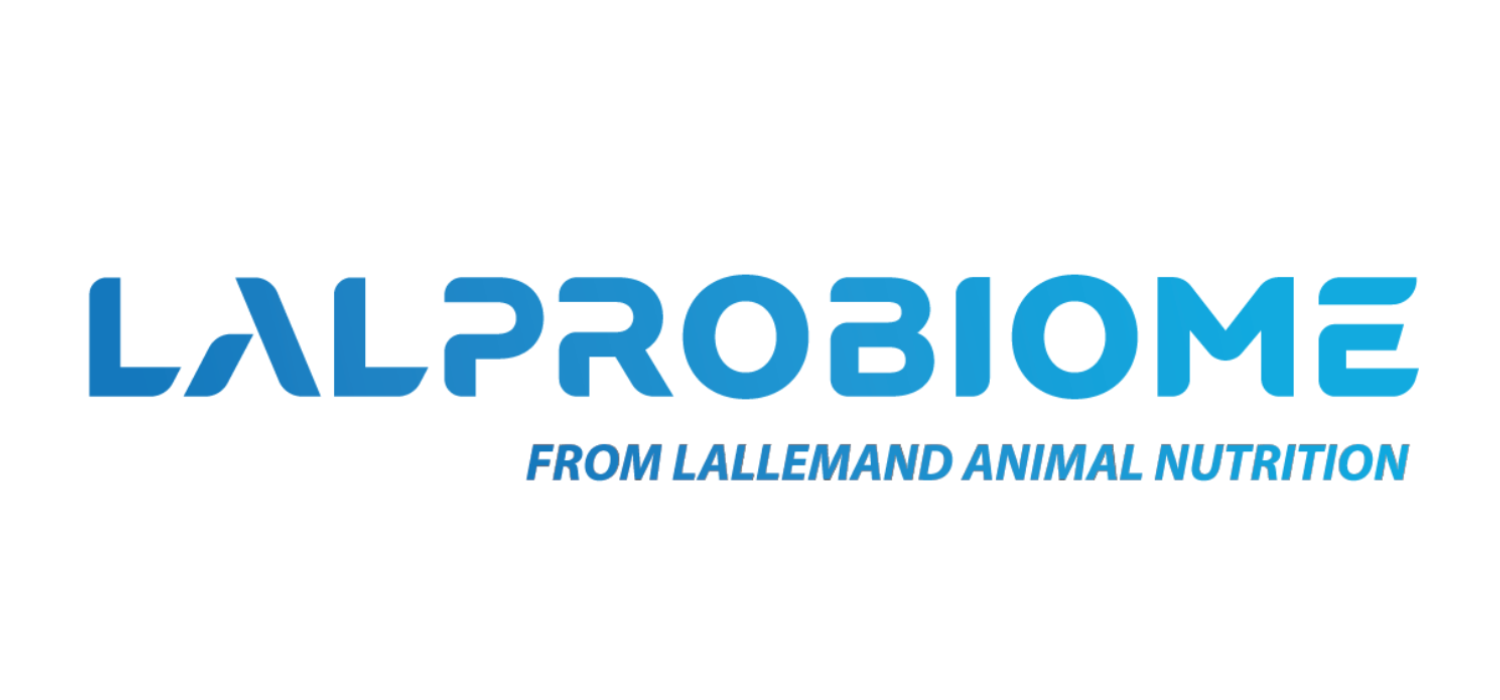 Preservatives
Preservatives
2+ MIN
05/12/2024
LALPROBIOME, the Lallemand Animal Nutrition’s platform for Pet well-being
BLAGNAC, FRANCE – December, 2024 – Lallemand Animal Nutrition is proud to introduce you to LALPROBIOME, its platform of innovative microbial solutions tailored for pets. The brand offers a broad range of yeast and bacteria-based solutions including prebiotics, probiotics, postbiotics and antioxidative solutions. From digestive care to immune support, antioxidant optimization to cognitive function, LALPROBIOME offers a broad range of specific solutions allowing for petfood, treat, and supplement customization and differentiation.
Dr. Francesca Susca, Global Pet Category Manager, explains: 'Our company is a global leader in the selection and application of microbial strains to address nutrition and well-being of human and animals. We've capitalized on this legacy to bring LALPROBIOME to the petfood market. LALPROBIOME leverages the natural power of yeast and bacteria with cutting edge science to support pet health and well-being.'
She added: 'We understand that every business is unique, which is why we're thrilled to offer LALPROBIOME. This gives our customers the ability to elevate and differentiate their brands with novel ingredients that support unique and specific benefits. LALPROBIOME products have been exhaustively tested for safety and efficacy, providing customers with proven, healthy products.'
Lallemand's LALPROBIOME solutions can bring benefits such as:
Digestive care
Immune support
Antioxidant optimization
Nutritional optimization
Palatability
Well-being (gut-brain axis)
About Lallemand Animal Nutrition
Partnering in microbial solutions for a changing world
We are Lallemand Animal Nutrition – a global leader in the science of fermentation – and a primary producer of yeast and bacteria. Our passion is harnessing microorganisms to optimize animal well-being and performance, forage management, and the animal environment. We remain unwavering in our commitment to helping our industry partners and farmers sustainably feed a growing global population through improved animal performance – and enhancing the well-being of livestock & companion animals.
We provide the broadest range of innovative microbial products, services and solutions for customers around the world.
We deliver tailor-made services according to your specific needs and offer expert technical support to ensure the optimal application and efficacy of our solutions.
Leveraging the natural power of yeast and bacteria, we develop, produce and market highly technical products including probiotics, silage inoculants, and microbial derivatives. Using sound science, proven results and knowledge from experience, we apply the right strains for the right applications.
Lallemand Animal Nutrition is Specific for your Success!
For more information, please visit https://lalprobiome.lallemandanimalnutrition.com
Connect with us at [email protected]
Not all products are available in all markets nor associated claims allowed in all regions.
Source: Lallemand Animal Nutrition
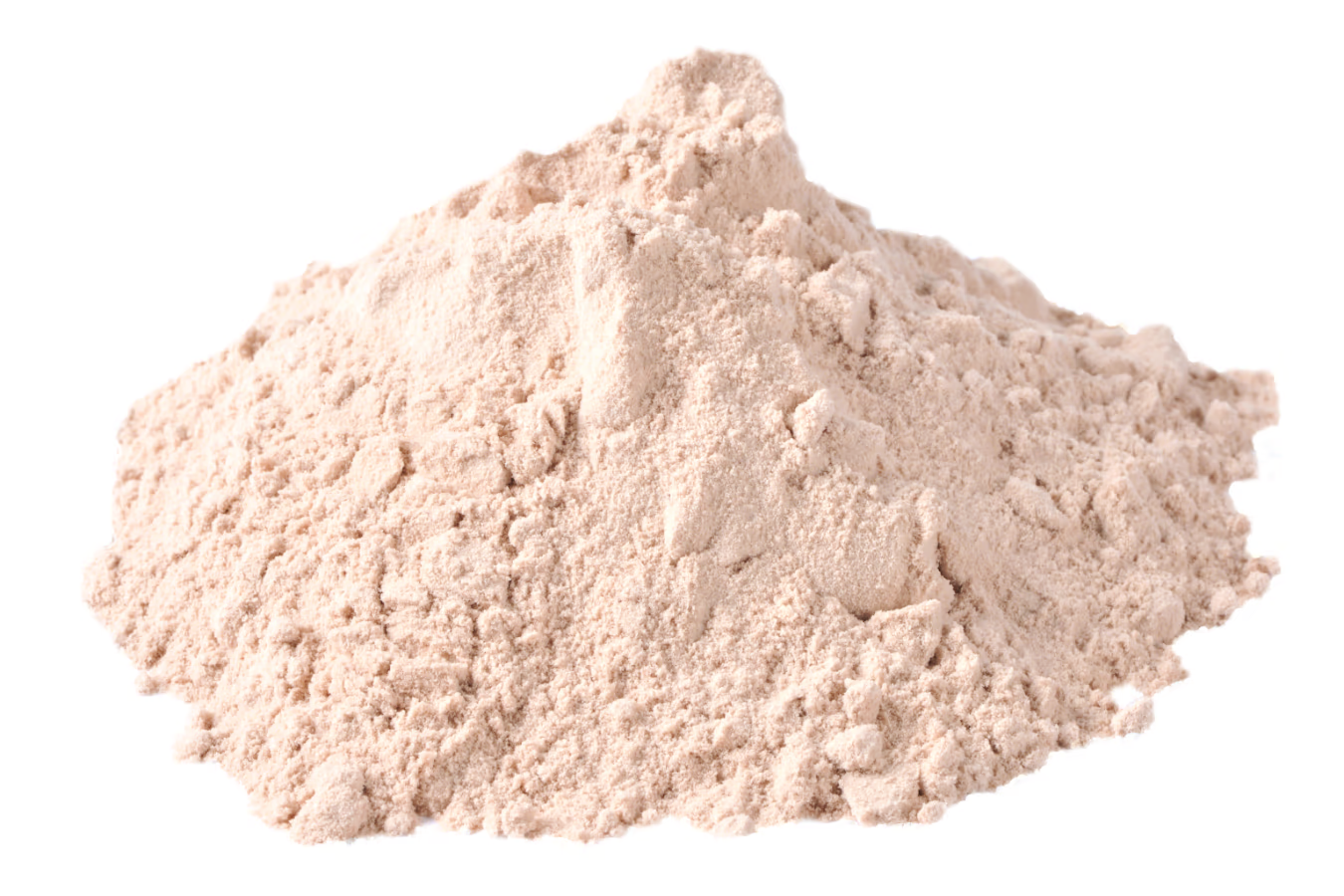 Other microingredients
Other microingredients
2+ MIN
03/12/2024
Spray-dried plasma included in the formulation allows for higher meat inclusion in diets
Several initial tests were completed to prove the concept. The dry blend feed rate was established, and adjustments in fresh meat and SDP feed rates to the dry blend feed rate were evaluated initially with a twin-screw extruder. Limits were determined by the extruder inability to continue the production of kibble. Feed rate ranges from 2.5 to 20% SDP and 25-50% fresh meat were evaluated. With initial concept testing, SDP feed rates from 2.5 to 20% allowed for increased fresh meat feed rates to 45-50% depending on the feed rate of SDP and formulation type. Follow-up evaluation tests were completed formulating SDP into the dry blend with the least cost formulation. These formulas were evaluated on both single and twin-screw extruders. Targets of 2.5 and 5.0% SDP in the final kibble were formulated into the dry blend in both grain-free and grain formulas. Ranges of meat feed rates from 25 to 45% were again evaluated. Overall, the addition of plasma in the dry blend formula allows formulators to increase meat levels while improving kibble durability and palatability, all while increasing meat inclusion levels. REVIEWING KEY RESULTS INCLUSION RATES & DURABILITY / SINGLE SCREW EXTRUSION WITH GRAIN-FREE FORMULA 35% MEAT CONTROL VS. 2.5% AP 920/35% MEAT CONCLUSIONS • Plasma included in the formulation allows higher meat inclusion in diets. • Cook and Durability are maintained or improved. • Palatability was improved in both cat and dog kibbles. By: Dr. Joy Campbell, Senior Director of Global Pet Food Technical Service, APC Source: All Pet Food Magazine
 Market Information
Market Information
4+ MIN
02/12/2024
The pet industry in Spain
Spain is known for its love of pets, and the country has seen a remarkable increase in pet ownership in the past couple of years.
According to recent data from the National Association of Pet Food Manufacturers (ANFAAC), more households in the country have pets than children under the age of 15.
This highlights the growing significance of pets in Spanish homes, with the pet population now expected to exceed 20,45 million in 2024.
Spending habits of Spanish pet owners
Nearly half of people in Spain share their homes with a pet, according to a survey of 700 respondents by AEDPAC. Moreover, 8 in 10 pet owners consider their pets part of the family.
This insight points to an estimated 39% of Spanish households that nurture pets as if they were kids. Dogs andcats remain the most popular pets, contributing to increased demand for pet services and supplies. In many cases premium, or even custom-made.
A study from the Spanish pet association, AEDPAC, also shows how much different generations in Spain spend on their pets on average:
Where do Spanish pet parents shop?
A recent study on Spain's pet owners showed that more than half of them mostly shop in brick-and-mortar stores, however, there are some differences in this behavior between different types of pet parents.
Whether it's bought online or offline, dry and wet pet foods dominate the market. Accounting for 71.54% of the total market share in 2022, it is projected to grow from an estimated$2.63 billion (€2.43B) in 2024 to $3.24 (€2,99B) billion by 2029.
Premium customized pet foods, health trackers, and interactive toys designed to meet cognitive needsexemplify the industry's adaptation to consumer demands. E-commerce platforms enhance the market by providing convenient access to these products.
Spanish pet food inflation and economic impact
The pet food inflation in Spain surged by 4.5% in January 2024, but the rate nearly halved by February and stood at 1.9% in May, showing a significant decline in inflationary pressures on pet products.
Spanish consumers have adapted to the lower prices, by increasing their shopping frequency, with an average of 181 trips to supermarkets last year, up from 162 in previous years.
In 2023, Spain's pet food imports were mostly from Germany, totaling approximately $49.6 million (€45,8M).
The primary export destinations for Spanish industrial production continue to be the European Union, the rest of Europe, the Middle East, the Maghreb, the rest of Africa, America, and Southeast Asia.
Key market investments and sustainability
Spain has become a prime choice for many manufacturing companies in the pet industry looking to expand.
Pet food manufacturer Picart has opened a new 12,000-square-metre production plant in Llinars del Vallès, Barcelona, following a $12.9 million (€12M) investment in 2023.
Similarly, Eviosys, the largest metal food can manufacturer in the EMEA region, has invested $8.5 million (€8M) to expand production at two Spanish facilities. This move aims to meet the rising demand in the pet food and fish markets.
Spain is also playing a key role in the EU-backed ZEST project, which repurposes food waste, such as mushrooms, into nutrient-rich pet food ingredients, helping to promote a more sustainable pet industry.
From pet care to pet travel
Numerous scientific studies highlight the emotional, health, and economic benefits of having pets. Recognizing these advantages, the Spanish public train operator Renfe has, since 2023, permitted the transport of pets on all high-speed routes.
This policy includes dogs, cats, ferrets, guinea pigs, hamsters, and rabbits under 10 kilograms. Pet owners can now enjoy the company of their furry friends during their travels for a fee of $10.8 (€10), per trip, making it more convenient to keep their beloved animals close.
To meet the growing demand from passengers traveling with pets, Barcelona-based low-cost airline Vueling has partnered with Belgian pet food company Edgard & Cooper to offer 'buy-on-board' pet treats, making it the first airline in Europe to do so.
In 2023, Vueling also increased the number of in-cabin pets allowed per flight from 3 to 5, accommodating dogs, cats, birds (excluding birds of prey), and turtles/tortoises weighing 8 kg or less in specific carriers.
Spain's growing pet industry reflects the nation's strong connection to animals and the increasing role pets play in Spanish households. The country is making strides in pet care innovation and support, highlighting the important place pets hold in modern society.
Source: GlobalPETS
 Market Information
Market Information
4+ MIN
29/11/2024
Mars Wodonga to be Australia’s first large-scale steam-based manufacturing site to deploy a 100% renewable energy solution by 2026 with new solar thermal plant
Craig Sargeant, General Manager of Mars Petcare Australia and New Zealand, was joined by Prime Minister Anthony Albanese for a tour of the Wodonga site while sharing his enthusiasm for the ground-breaking initiative, which aligns with the company's broader global net zero by 2050 ambitions.
'We are incredibly proud to announce that Mars will be the first manufacturing facility of its kind in Australia to deploy a 100% renewable energy solution within two years,' said Sargeant. 'Decarbonizing site-based process heat, coupled with Mars Australia's 100% renewable electricity use, is a significant achievement that not only reflects our ongoing commitment to sustainability but also positions our Wodonga facility as a leader in green process heat manufacturing on a national scale.'
The $39.3 million Mars Wodonga Solar Thermal Plant will spearhead this transition, including the installation of an 18-megawatt Parabolic Trough Concentrated Solar Thermal (CST) plant that will provide up to 10 hours of thermal energy storage for cooking pet food. The project, which includes a $17.2 million grant from the Australian Government through the Australian Renewable Energy Agency (ARENA), marks the first commercial deployment of parabolic trough CST technology in Australia.
'Investing in renewable energy technologies like CST is critical to decarbonizing industrial processes, particularly in sectors that heavily rely on gas for steam-based manufacturing,' Sargeant continued. 'CST offers a powerful solution by capturing and storing solar energy in the form of high temperature heat, for use at any time, making it an ideal fit for our steam-based manufacturing needs.'
The project also builds on Mars' implementation of Electric Thermal Energy Storage (eTES) technology, which allows the facility to utilize low-cost, grid-connected renewable electricity during off-peak times to generate and store heat that can produce steam at any time of day or night. This eTEs system, supported by CSIRO, provides a cost-effective, renewable alternative to gas.
In addition, Mars recently announced another joint initiative whereby the company is working together with Australian Gas Infrastructure Group (AGIG) to purchase Renewable Gas Guarantee of Origin certificates at Hydrogen Park Murray Valley. This arrangement will displace over 10% of Mars Australia's total gas consumption, which includes Mars Petcare Wodonga.
For Mars, the CST and eTES systems are complementary renewable heat technologies. With the addition of the AGIG hydrogen purchase, and Mars Australia's existing 100% renewable electricity agreement, the Wodonga facility will deploy a 100% renewable energy solution within two years, as part of our global commitment to 100% renewable energy for site-based operations by 2040.
'Earlier this year, Mars globally announced that since 2015, GHG emissions in the company's value chain have been reduced by 16% or 5.7 million metric tons. This project further contributes to Mars Net Zero Roadmap target to reduce emissions globally by 50% by the end of 2030, which we're on track to achieve," said Sargeant.
Mars is also working with other local companies and government entities as part of a broader effort to help create a renewable energy hub in northeast Victoria for generations to come.
'Mars is incredibly proud of the fact we have been manufacturing in the Wodonga area for more than 50 years,' Sargeant said. 'We are part of the fabric of the local community, supporting jobs and investment in regional Victoria. Wodonga is at the heart of that journey, and today's announcement is a major step forward in supporting both regional investment and Australia's clean energy future.'
About Mars, Incorporated
Mars, Incorporated is driven by the belief that the world we want tomorrow starts with how we do business today. As a $50bn+ family-owned business, our diverse and expanding portfolio of leading pet care products and veterinary services support pets all around the world and our quality snacking and food products delight millions of people every day. We produce some of the world's best-loved brands including ROYAL CANIN®, PEDIGREE®, WHISKAS®, CESAR®, DOVE®, EXTRA®, M&M's®, SNICKERS® and BEN'S ORIGINAL™. Our international networks of pet hospitals, including BANFIELD™, BLUEPEARL™, VCA™ and ANICURA™ span preventive, general, specialty, and emergency veterinary care, and our global veterinary diagnostics business ANTECH® offers breakthrough capabilities in pet diagnostics. The Mars Five Principles—Quality, Responsibility, Mutuality, Efficiency and Freedom—inspire our 150,000 Associates to act every day to help create a better world for people, pets and the planet.
Source: Mars
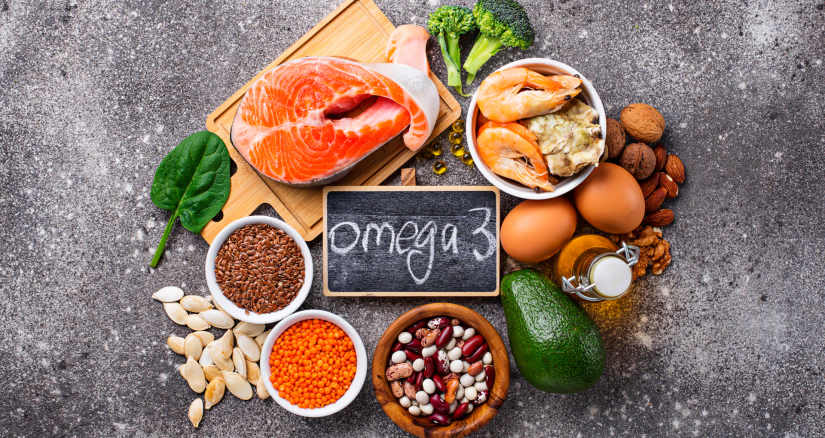 Formulation
Formulation
9+ MIN
27/11/2024
Understanding Omega 3 Fatty Acids: Their Benefits for Dogs and Cats
Sources of Omega-3 Fatty Acids Alpha-linolenic acid (ALA): Alpha-linolenic acid is a precursor to the longer chain omega-3 fatty acids eicosapentaenoic acid and docosahexaenoic acid (EPA and DHA, respectively) and requires enzymatic conversion into these beneficial fatty acids. This fatty acid is primarily a plant-based omega-3 fatty acids found in sources like flaxseed, canola oil, and chia seeds.1 Eicosapentaenoic acid (EPA) and docosahexaenoic acid (DHA): EPA and DHA are long-chain omega-3 fatty acids primarily found in marine sources such as fish oil, krill oil, and algae.2,6 They are considered essential because pets cannot synthesize them in sufficient quantities from shorter-chain omega-3 fatty acids, such as ALA (alpha-linolenic acid).7 Both EPA and DHA play significant roles in reducing inflammation, supporting heart health, modulating the immune system, aiding in cognitive function, and promoting healthy skin and coat .8 Essential for proper neurological development and function, DHA is essential for growing puppies and kittens and an important nutrient for aging pets.10 It is also a critical structural component of the brain, retina, and nervous system.9 Why EPA and DHA Specifically Take the Spotlight While ALA is beneficial, dogs and cats have limited abilities to convert it efficiently into EPA and DHA, the biologically active forms of omega-3 fatty acids.3 This is due to the low activation of an enzyme delta-6 (Δ-6) desaturase in dogs that is almost nonexistent in cats.4-5 Therefore, providing EPA and DHA directly through their diet is crucial for optimal health in puppies and kittens and can beneficial for adult animals as well. Health Benefits of EPA and DHA Anti-Inflammatory Effects Chronic inflammation is a common underlying factor that can be created by stress, diet, obesity, intestinal dysbiosis, arthritis, allergies, and inflammatory bowel disease, which in turn can be caused by stress, diet, obesity, and/or intestinal dysbiosis.12,11 By incorporating EPA and DHA into the diet, dogs and cats may experience reduced inflammation, leading to decreased pain and better overall health.13 Joint Health Osteoarthritis is estimated to affect up to 20% of dogs over the age of one, and in cats, it's estimated that 61% over the age of six will be affected.14-15 Although osteoarthritis commonly develops in older, overweight cats and dogs, it can affect cats and dogs of all ages, sizes, and breeds. Supplementation with EPA and DHA can help reduce the production of inflammatory cytokines and enzymes that break down cartilage.16-17 Supplementing with EPA and DHA may alleviate symptoms of arthritis, improve joint function, and enhance the quality of life for older dogs and cats or those with joint problems. Cardiovascular Health In canine and feline models, DHA and EPA have been shown to reduce the occurrence of ventricular arrhythmias, a common issue in various cardiac diseases.18 Their benefit is the stabilization of heart muscle cell membranes, this stabilization helps to prevent irregular heartbeats. Additionally, these omega-3 fatty acids reduce the levels of pro-inflammatory molecules, which can promote irregular hearbeats.19 They also help by maintaining smooth blood flow and preventing the formation of blood clots (thrombosis). In addition, omega-3 fatty acids, particularly DHA and EPA, enhance the production of nitric oxide in humans.20 This molecule promotes the widening of blood vessels, leading to improved blood flow. Skin and Coat Health Dogs and cats with skin conditions, allergies, or dry, flaky skin can benefit significantly from EPA and DHA. Omega-3s help reduce the production of inflammatory molecules in the body, potentially improving skin conditions like allergies, dermatitis, or other inflammatory skin conditions.21 Inflammation can damage the skin barrier, leading to increased water loss and dry skin. The skin also produces natural oils that coat the hair, providing shine and protection. Omega-3 fatty acids help regulate the production of these oils, resulting in a shiny, healthy coat.22 Regular supplementation can lead to visible improvements in the skin and coat condition. Cognitive Function In puppies and kittens, adequate DHA levels are needed for proper brain development by promoting the growth of new neurons (neurogenesis) and the formation of synapses (synaptogenesis), both of which are necessary for learning and memory.23,24,25 For adult pets undergoing training or engaging in new activities, omega-3 fatty acids can enhance their capacity to retain and learn new information.26 As pets age, they may experience cognitive decline, akin to the cognitive changes seen in humans. This condition in pets is known as Cognitive Dysfunction Syndrome and is a neurodegenerative disorder that affects older dogs and cats. This disease is marked by a gradual decline in memory, learning, and awareness.27 Omega-3 fatty acids can help slow the progression of age-related cognitive disorders and regular intake of EPA and DHA may alleviate symptoms of cognitive dysfunction syndrome, in these pets, potentially improving their quality of life.28 Vision Health As a major component of the retina, the part of the eye responsible for capturing light and sending visual signals to the brain, DHA aids in the development of vision.29 Proper visual acuity is essential for a young animal's ability to interact with its environment and to learn from visual cues. Supplementation of EPA and DHA help preserve vision by supporting the health of the nervous system and reducing inflammation, ensuring your pets remain alert and engaged with their environment. Dosage and Considerations While EPA and DHA offer numerous health benefits for dogs and cats, it is important to ensure proper dosage and consider individual needs. Here are some key points to keep in mind: Consult with a Veterinarian: Before adding any additional omega-3 fatty acids to a pet's diet, consult with an animal nutritionists or veterinarian. They can assess a pet's specific needs, recommend appropriate dosages, and monitor for any potential side effects. Quality and Purity: When choosing supplements, opt for high-quality products that undergo rigorous testing for purity and potency. Look for supplements that are free from contaminants such as heavy metals and toxins. Reach out to brands and request that they provide third-party testing results to ensure the safety and efficacy of their products. Dosage Guidelines and Adjustments: The appropriate dosage of EPA and DHA varies based on factors such as a pet's size, age, and health condition. Since these guidelines can vary, it is essential to follow a veterinarian's or nutritionist's recommendations. After starting a pet on EPA and DHA supplements, monitor their response and adjust as needed. Some pets may require higher or lower dosages depending on their individual needs. Regular check-ups with a veterinarian can help ensure a pet is receiving the optimal amount of these essential fatty acids. Conclusion EPA and DHA are vital components of a balanced diet for dogs and cats, young and old alike. These essential omega-3 fatty acids offer a wide range of health benefits, including anti-inflammatory effects, improved joint health, cardiovascular support, and enhanced cognitive function. Ensuring an adequate intake of EPA and DHA can lead to improved health outcomes, supporting both the physical and mental well-being of dogs and cats at all life stages. By: Dr. Katy Miller, DVM, CVFT, CVNAN, CPFFCP, PCQI, PAS Source: BSM Partners References Lenox, CE. 2016. Role of dietary fatty acids in dogs & cats. Today Vet. Pract. 6(5):83-90. Kleiner, AC, Cladis, DP, Santerre, CR. 2015. A comparison of actual versus stated label amounts of EPA and DHA in commercial omega‐3 dietary supplements in the United States. J. Sci. Food Agr. 95(6):1260-1267. Doi:1002/jsfa.6816 Bauer, JJE. 2008. Essential fatty acid metabolism in dogs and cats. Revista Brasileira de Zootecnia. 37:20-27. Doi:10.1590/S1516-35982008001300004 Bauer JE. 2006. Metabolic basis for the essential nature of fatty acids and the unique dietary fatty acid requirements of cats. J. Am. Vet. Med. Assoc. 229:1729–1732. Doi:10.2460/javma.229.11.1729 Filburn CR, Griffin D. 2005. Canine plasma and erythrocyte response to a docosahexaenoic acid-enriched supplement: Characterization and potential benefits. Vet Ther. 6:29-42. Ryckebosch, E, Bruneel, C, Muylaert, K, Foubert, I. 2012. Microalgae as an alternative source of omega‐3 long chain polyunsaturated fatty acids. Lipid Technol. 24(6):128-130. Doi:10.1002/lite.201200197 Lenox, CE. 2015. Timely topics in nutrition: an overview of fatty acids in companion animal medicine. J. Am. Vet. Med. Assoc. 246(11):1198-1202. Doi:10.2460/javma.246.11.1198 Magalhaes, TR, Lourenco, AL, Gregorio, H, Queiroga, FL. 2021. Therapeutic effect of EPA/DHA supplementation in neoplastic and non-neoplastic companion animal diseases: A systematic review. In Vivo. 35(3):1419-1436. Doi:10.21873/invivo.12394 Salem Jr, N, Litman, B, Kim, HY, Gawrisch, K. 2001. Mechanisms of action of docosahexaenoic acid in the nervous system. Lipids. 36(9):945-959. Doi:10.1007/s11745-001-0805-6 Waldron, MK, Spencer, AL, Bauer, JE. 1998. Role of long-chain polyunsaturated n-3 fatty acids in the development of the nervous system of dogs and cats. J. Am. Vet. Med. Assoc. 213(5):619-622. Doi:10.2460/javma.1998.213.05.619 Furman, D, Campisi, J, Verdin, E, Carrera-Bastos, P, Targ, S, Franceschi, C, Ferrucci, L, Gilroy, DW, Fasano, A, Miller, GW, Miller, AH, Mantovani, A, Weyand, CM, Barzilai, N, Goronzy, JJ, Rando, TA, Effros, RB, Lucia, A, Kleinstreuer, N, & Slavich, GM. 2019. Chronic inflammation in the etiology of disease across the life span. Nature Med. 25(12):1822-1832. Doi:10.1038/s41591-019-0675-0 Bauer, JE. 2011. Therapeutic use of fish oils in companion animals. J. Am. Vet. Med. Assoc. 239(11):1441-1451. Doi:10.2460/javma.239.11.1441 Kaur, Haneet, Singla, A, Singh, S, Shilwant, S, & and Kaur, R. 2020. Role of omega-3 fatty acids in canine health: A review. Intern. J. Current Microbiol. Appl. Sci. 9(3):2283-2293 Doi:10.20546.ijcmas.2020.903.259 Johnston SA. 1997. Osteoarthritis. Joint anatomy, physiology, and pathobiology. Vet. Clin. N. Am. Small Anim. Pract. 27:699–723. Doi:10.1016/S0195-5616(97)50076-3 Bennett, David, Siti Mariam bt Zainal Ariffin, and Pamela Johnston. 2012. Osteoarthritis in the cat: 1. How common is it and how easy to recognise? J. Feline Med. Surg. 14(1):65-75. Doi:10.1177/1098612X11432828 Adler, N, Schoeniger, A, Fuhrmann, H. 2018. Polyunsaturated fatty acids influence inflammatory markers in a cellular model for canine osteoarthritis. J. Anim. Physiol. Anim. Nutr. 102(2):e623-e632. Doi:10.1111/jpn.12804 Curtis CL, Hughes CE, Flannery CR, Little, CB, Harwood, JL, & Caterson, B. 2000. n-3 fatty acids specifically modulate catabolic factors involved in articular cartilage degradation. J. Biol. Chem. 275:721–724. Doi:10.1074/jbc.275.2.721 Smith, CE, Freeman, LM, Rush, JE, Cunningham, SM, & Biourge, V. 2007. Omega‐3 fatty acids in Boxer dogs with arrhythmogenic right ventricular cardiomyopathy. J. Vet. Intern. Med. 21(2):265-273. Doi:10.1111/j.1939-1676.2007.tb02959.x Goel, A, Pothineni, NV, Singhal, M, Paydak, H, Saldeen, T, & Mehta, JL. 2018. Fish, fish oils and cardioprotection: Promise or fish tale? Internat. J. Mol. Sci. 19(12):3703. Doi:10.3390/ijms19123703 Freeman, LM, Rush, JE, Markwell, PJ. 2006. Effects of dietary modification in dogs with early chronic valvular disease. J. Vet. Intern. Med. 20(5):1116-1126. Doi:10.1111/j.1939-1676.2006.tb00709.x Burron, S, Richards, T, Krebs, G, Trevizan, L, Rankovic, A, Hartwig, S, Pearson, W, Ma, DWL, & Shoveller, AK. 2024. The balance of n-6 and n-3 fatty acids in canine, feline and equine nutrition: exploring sources and the significance of alpha-linolenic acid. J. Anim. Sci. Doi:10.1093/jas/skae143 Combarros, D, Castilla-Castaño, E, Lecru, LA, Pressanti, C, Amalric, N, Cadiergues, MC. 2020. A prospective, randomized, double blind, placebo-controlled evaluation of the effects of an n-3 essential fatty acids supplement (Agepi® ω3) on clinical signs, and fatty acid concentrations in the erythrocyte membrane, hair shafts and skin surface of dogs with poor quality coats. Prostaglandins, Leukotrienes and Essential Fatty Acids. 159:102140. Doi:10.1016/j.plefa.2020.102140 Cao, D, Kevala, K, Kim, J, Moon, HS, Jun, SB, Lovinger, D, Kim, HY. 2009. Docosahexaenoic acid promotes hippocampal neuronal development and synaptic function. J. Neurochem. 111(2):510-521. Doi:10.1111/j.1471-4159.2009.06335.x Zicker, SC, Jewell, DE, Yamka, RM, Milgram, NW. 2012. Evaluation of cognitive learning, memory, psychomotor, immunologic, and retinal functions in healthy puppies fed foods fortified with docosahexaenoic acid–rich fish oil from 8 to 52 weeks of age. J. Am. Vet. Med. Assoc. 241(5):583-594. Doi:10.2460/javma.241.5.583 Wu, G. 2024. Roles of nutrients in the brain development, cognitive function, and mood of dogs and cats. In Nutrition and Metabolism of Dogs and Cats (pp. 177-202). Cham: Springer Nature Switzerland. Doi:10.1007/978-3-031-54192-6_8 Hadley, KB, Bauer, J, Milgram, NW. 2017. The oil-rich alga Schizochytrium sp. as a dietary source of docosahexaenoic acid improves shape discrimination learning associated with visual processing in a canine model of senescence. Prostaglandins, Leukotrienes and Essential Fatty Acids. 118:10-18. Doi:10.1016/j.plefa.2017.01.011 Sordo, L, Gunn‐Moore, DA. 2021. Cognitive dysfunction in cats: update on neuropathological and behavioural changes plus clinical management. Vet. Rec. 188(1):e3. Doi:10.1002/vetr.3 Cupp, CJ, Jean-Philippe, C, Kerr, WW, Patil, AR, Perez-Camargo, G. 2006. Effect of nutritional interventions on longevity of senior cats. Intern. J. Appl. Res. Vet. Med. 5(3):133-149. Uauy, R, Hoffman, DR, Peirano, P, Birch, DG, Birch, EE. 2001. Essential fatty acids in visual and brain development. Lipids. 36(9):885-895. Doi:10.1007/s11745-001-0798-1
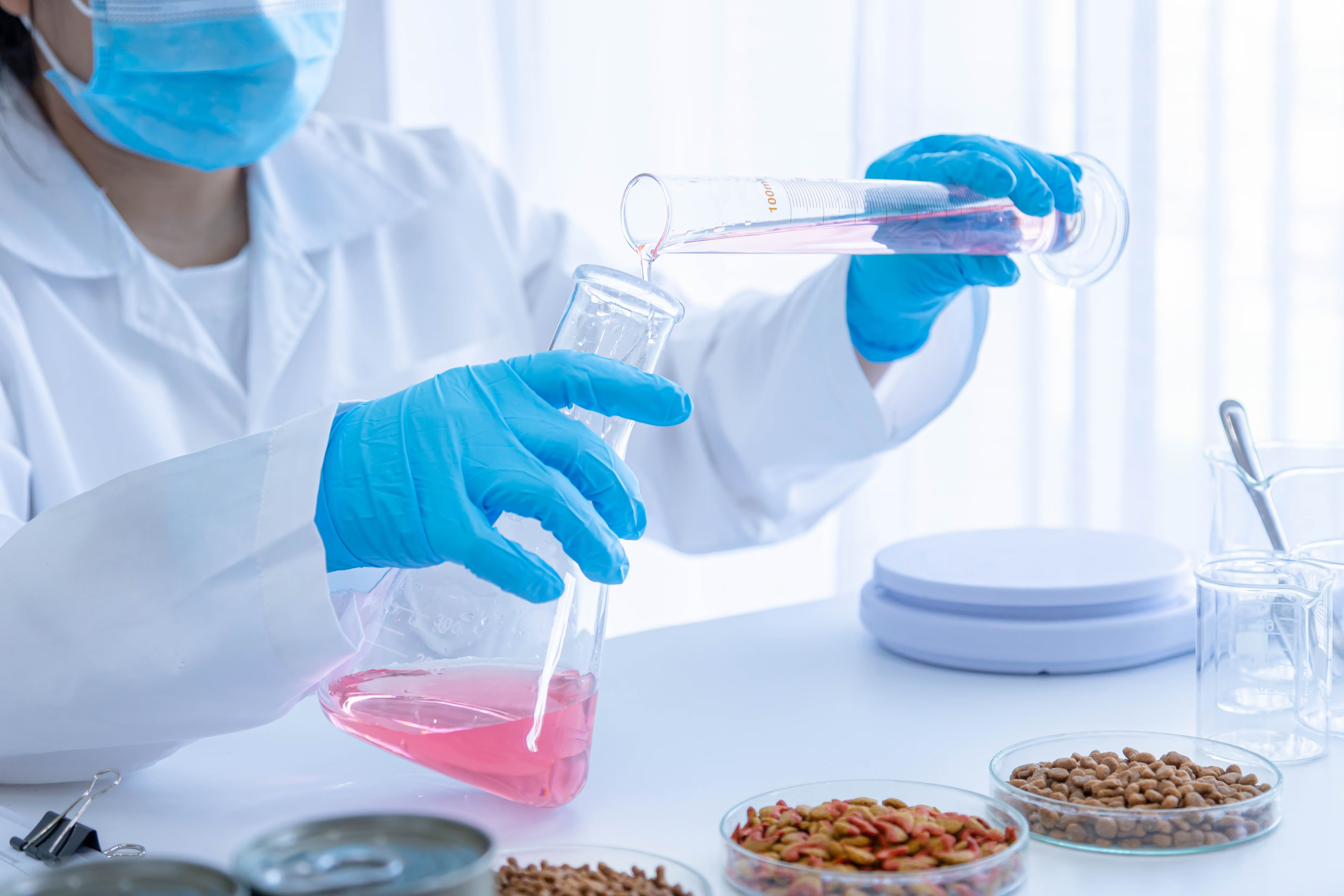 Laboratory
Laboratory
3+ MIN
26/11/2024
High-level nutrition: The revolution in pet health
In this context, science and technology have played a fundamental role in developing pet food that not only meets basic nutritional needs, but also promotes long-term health. The evolution of pet food processing and formulation technologies has enabled the creation of increasingly personalized diets for pets, meeting the specific demands of different breeds, ages, and health conditions. Through specialized proteins, probiotics, and functional ingredients, Kemin ensures that its products provide enhanced nutrition and immune support, which not only contributes to the animal's current health but also helps prevent potential issues in the years to come. One of Kemin's goals is to bring innovations and drive the market to constantly evolve. Our Research & Development team focuses on creating practical and effective solutions for the pet food industry. We offer a wide range of products that, carefully formulated, contribute to the success and quality of the food. Each solution is developed to add value, ensuring that our partners are always a step ahead in an increasingly competitive market. Thus, technological innovation becomes the main driver behind the continuous development of our solutions and services. It is not just about offering high-quality items; Kemin is constantly refining processes to ensure that our clients receive the most advanced products. This commitment to delivery and customer satisfaction is made possible through the services we provide: the Kemin Application Service (KAS), for example, is designed to integrate the latest technologies, enabling efficient implementation. Our specialists in pet food and rendering are constantly monitoring and updating application methods to ensure precise execution, guaranteeing maximum performance. Each strategy and plan are meticulously crafted to meet the specific needs of each client, making it possible to offer the highest quality equipment and service. Additionally, our Customer Laboratory Services (CLS) are constantly evolving, incorporating advancements that ensure faster and more accurate analyses. This allows clients to obtain reliable and personalized results, essential for safe and informed decision-making. With the expertise of the Technical Service Managers (TSMs), we ensure that cutting-edge technical knowledge is always available to assist with any challenge, offering support that goes beyond the conventional. Kemin's Research and Exploratory Services (RES) marks a significant advancement in our ability to innovate. Utilizing the latest research tools and techniques, we are exploring new frontiers and developing solutions that anticipate market needs. This proactive approach allows us not only to keep up with trends but to lead the way, ensuring we are always ahead in delivering products and services that exceed expectations. The future of pet food is directly tied to the ability to innovate and adapt to new scientific discoveries and emerging technologies. With its customer-centric approach, Kemin is ready to lead this path, offering solutions that promote pet health and well-being in a sustainable and efficient manner. In doing so, Kemin not only strengthens its commitment to excellence but also reaffirms its role as an indispensable partner for all those seeking the best in animal nutrition. By: Kemin Nutrisurance Source: All Pet Food Magazine
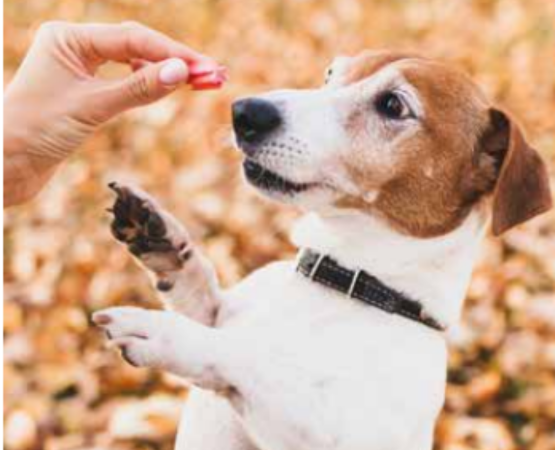 Dogs
Dogs
3+ MIN
22/11/2024
Chews and treats for dogs
Top Tips on Treating
Avoid human scraps or treats. Many owners want to 'treat' their pet and commercial pet treats are the sensible option. Human scraps or treats are inappropriate for pets as they can be too high in fat, salt, sugar and energy content or may contain ingredients that are toxic to pets. Some human foods can also be toxic to pets (see FEDIAF Nutritional Guidelines).
Use pet treats alongside a complete and balanced diet. Pets require a complete and balanced diet containing the vitamins, minerals, essential fatty acids, proteins and amino acids in the right amounts for their specific life stage. Chews and treats are typically classified as complementary products which are not designed to be nutritionally complete or contribute to the essential nutrient requirement of the pet. The term 'complete' or 'complementary' will be labelled on the pet food pack so please check before feeding.
Feed treats in moderation. It is recommended that no more than 10% of a pet's caloric average intake over a week or day come from treats. Please refer to the feeding guidelines on the packaging or contact the manufacturers helpline for more detailed information. Monitor your pet's weight regularly to keep them fit and healthy.
Keep it safe. Choose a chew that is the appropriate size and shape for your dog. Ensuring that any treat offered to your dog is the right size for his body weight is important in reducing the risk of choking. With all chews and treats there is always the potential for large pieces to be swallowed whole, causing trauma or choking. FEDIAF therefore advises that dogs are always supervised with chews and treats, or other items they might want to chew or play with.
Avoid excessively hard chews and treats. It has been shown that chewing on excessively hard objects, e.g. chews and treats that are not bendy and malleable, or don't soften very quickly and easily when chewed, could cause a painful tooth fracture, posing a risk to your dog's well-being. There isn't currently a specific legal standard for hardness for dog chews, but there are many products available that are really chewy and long-lasting, without being super hard.
If you need additional advice and guidance to find out if a chew or treat is suitable for your dog consult the manufacturer, a pet care professional or your vet.
Further Readings and Scientific Studies
A 2018 study published in Frontiers in Veterinary Science demonstrated the risk of tooth fractures with chews or toys that are too hard. The full study can be accessed here: Fracture Limits of Maxillary Fourth Premolar Teeth in Domestic Dogs Under Applied Forces.
A 2005 study published in Yamaguchi Journal of Veterinary Medicine (Japan) showed that half of owners of dogs with fractured teeth do not notice the tooth fractures in their dogs and highlighted the importance of owner education about living environment and regular veterinary check-ups. Study abstract can be found here: A survey of the fractured teeth of sixty canines and their treatment.
In a 2019 study they assessed 349 clinical cases in which foreign bodies (objects) were removed from dogs' oesophagus (the tube that connects the mouth to the stomach). The results showed that the majority (77%) of foreign bodies causing the obstruction/injury in those cases were bones. Read more here: Complications following removal of oesophageal foreign bodies: a retrospective review of 349 cases.
A 2017 retrospective study of 222 deaths in dogs, which were treated for esophageal foreign body obstruction, showed that osseous (bone material) were the foreign body in 81% of the cases. Read more here: Risk Factors for Death in Dogs Treated for Esophageal Foreign Body Obstruction: A Retrospective Cohort Study of 222 Cases (1998-2017).
Download the factsheet or click here for more factsheets.
Source: FEDIAF
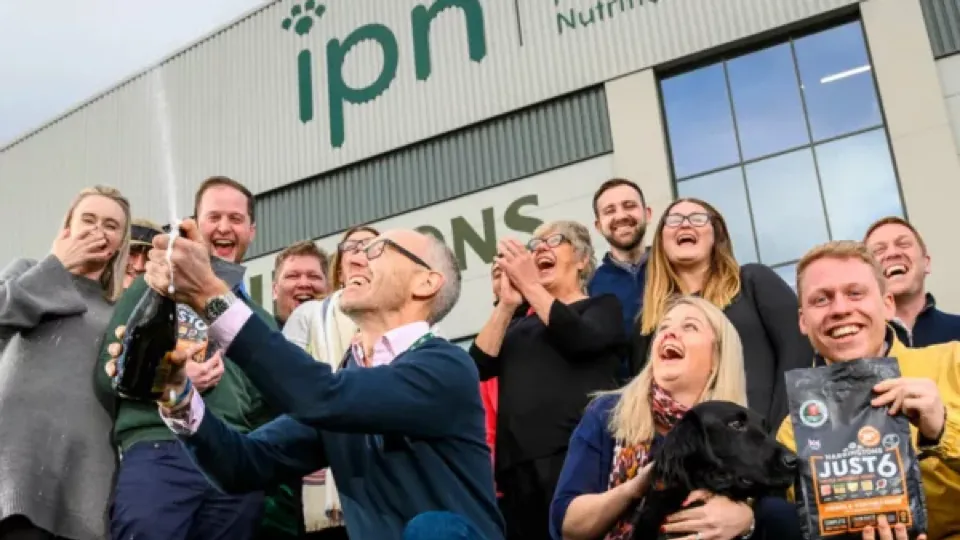 Manufacturers
Manufacturers
1+ MIN
20/11/2024
Inspired Pet Nutrition completes acquisition of Butcher’s Pet Care
British pet food manufacturer Inspired Pet Nutrition (IPN) has completed the acquisition of Northampton-based Butcher's Pet Care, which was announced earlier in August. IPN's CEO Arthur van Benthem expresses his team is 'thrilled' to welcome the new colleagues. 'This is the start of an exciting new chapter where we unite our passion for pets, combine expertise and share heritage to make an even bigger impact in the UK and European pet food markets.' The new group is expected to hit over €400 million ($432.4M) in gross sales. Refinancing Local media reports that Butcher's is refinancing its existing production facilities with a more adaptable funding solution to increase its financial flexibility. The company has reportedly agreed to a £43 million ($55.8M/€51.6M) funding package from Credit fund Blazehill Capital and Secure Trust Bank Commercial Finance, a division of Secure Trust Bank (STB) that specializes in providing financial solutions to businesses. The Northamptonshire-based company didn't comment after a request from GlobalPETS but stated that the leadership team is currently busy with the deal. The acquisition of Butcher's Pet Care is expected to strengthen IPN's position as one 1 of the UK's 3 biggest pet food manufacturers over the next 5 years. It will also expand its portfolio by offering more affordable, superior natural, wet and dry pet food brands. Source: GlobalPETS
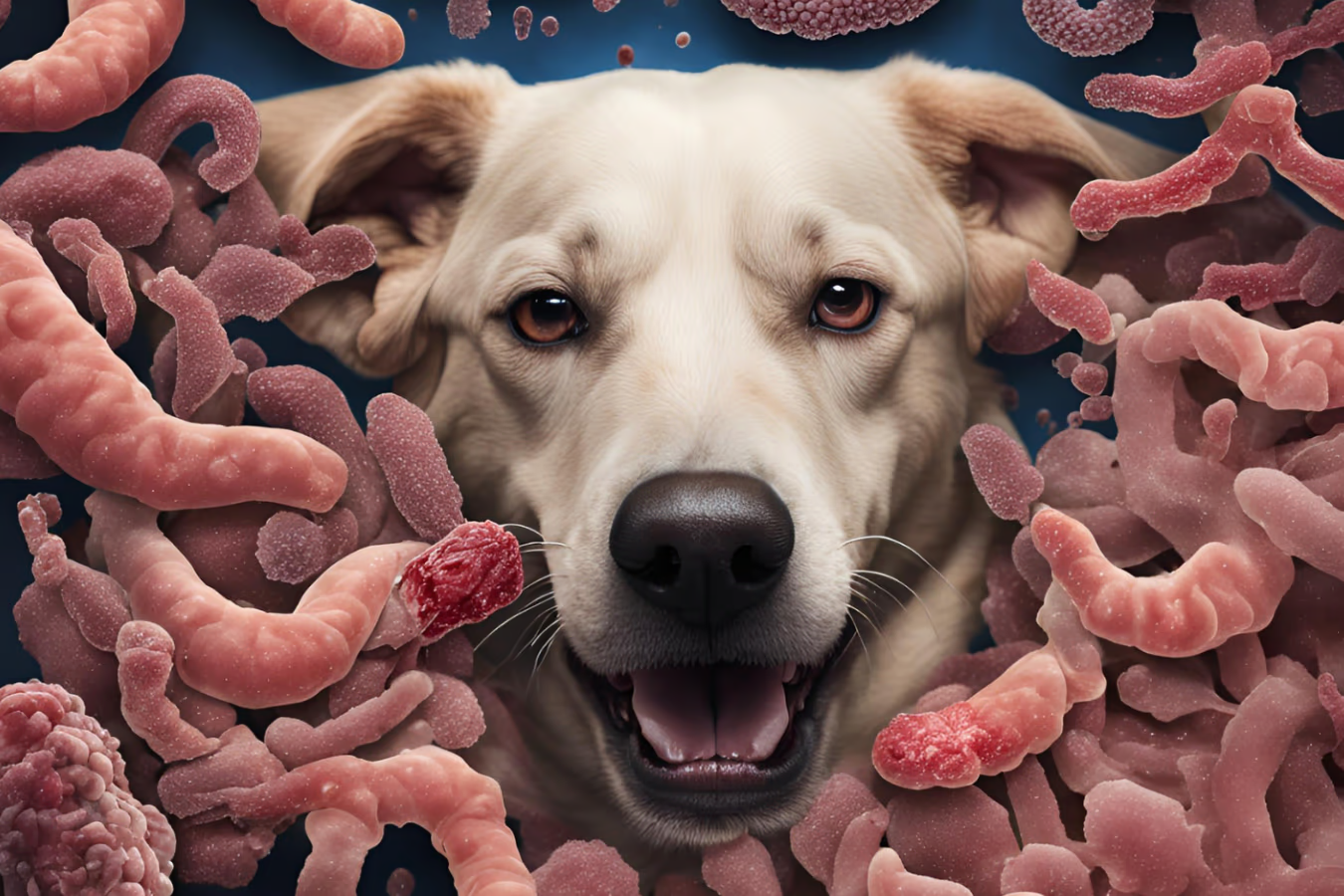 Preservatives
Preservatives
6+ MIN
19/11/2024
Caring for our pets' bacteria
A few years ago, it seemed incredible to think that our bodies contain more bacterial cells than human ones, but this is indeed the case. In a 70 kg human, the number of bacteria is around 3.8 x 10¹³, while human cells are estimated at 3 x 10¹³. Some studies even suggest this difference could be greater, making us a true ecosystem where various types of bacteria coexist with our own cells. This concept is not only applicable to humans but also to other animals, including our pets. Pets are now perceived as family members, and the efforts to improve their diet and health have drastically increased in recent years. Numerous advances in understanding how the bacteria in their bodies affect their health have made the search for new foods and products to care for these bacteria fundamental in maintaining a healthy balance. The microbiome and its importance The set of microorganisms that coexist in balance within the bodies of our companion animals is known as the microbiome. The microbiome plays a crucial role in the host's health, protecting against pathogenic microorganisms, modulating the immune response, contributing to the production of neurotransmitters, and participating in digestive processes such as fibre breakdown. The microbiome in a specific part of the body is called the microbiota, and depending on its location, certain types of bacteria will predominate. Thus, in the same animal, the bacteria living on the skin, in the mouth, or in the intestines will differ. Moreover, the microbiome is specific to each individual and depends on factors such as hygiene habits, stress, the animal's age, its living environment, contact with nature, and diet. A prolonged imbalance in the microorganism population can lead to dysbiosis, which, in turn, can trigger various diseases. For instance, in the mouth, dysbiosis can cause dental problems, gum inflammation, bad breath, digestive issues, promote the growth of caries-causing bacteria like Streptococcus mutans, or even increase the risk of cardiovascular or neurological diseases. In the gut, dysbiosis is associated with diseases like irritable bowel syndrome or inflammatory bowel disease, which alters the intestinal microbiota that disrupts key functions such as metabolite production and the intestinal barrier. This can lead to symptoms like diarrhoea, vomiting, loss of appetite or weight, though some pets may be asymptomatic. Treating dysbiosis involves dietary changes and the use of prebiotics, probiotics, or symbiotics, alongside managing underlying gastrointestinal conditions. On the other hand, the loss of beneficial bacteria leaves a niche available for opportunistic microorganisms, which can be pathogenic for both our pets and us. This is the case with some bacteria like Escherichia coli or Clostridium perfringens in dogs. Microorganisms may not always be serious pathogenic for animals, but they can be for humans, as in the case of toxoplasmosis (Toxoplasma gondii) in cats, highlighting how our health is directly linked to that of our pets. Helping to care for their microbiome As we have seen, it is essential to care for our pets' microbiomes to maintain their health, focusing on proper nutrition and habits. Among the available foods, some can help maintain, enrich, or enhance the microbiota in their digestive system. An example of this is foods rich in prebiotics, compounds that our pets cannot metabolise, but which serve as food for the beneficial bacteria in their bodies. Compounds, such as plant fibres, fructooligosaccharides, beta-glucans, various arabinogalactans, and inulin are particularly effective in promoting the development of intestinal microbiota. These compounds can be found in pet-safe foods like pumpkin, sweet potatoes, chicory root, or wheat bran, among others. Numerous studies have shown that consuming foods rich in prebiotics boosts the abundance of microorganisms from the Bacteroides, Bifidobacterium, or Lactobacillus genera, all of which are beneficial. Another advantage of prebiotics is that, since pets cannot digest them, they help control weight by reducing calorie intake and suppressing appetite. Another noteworthy group is probiotics. These foods contain live microorganisms that, when consumed in adequate amounts, can colonize different parts of the digestive tract, protecting the host from pathogens and directly benefiting health. Many probiotics belong to the lactic acid bacteria genus, which can be cultivated and introduced into our pets' diets. Fermented foods typically consumed by humans, which contain bacteria from the Lactobacillus and Bifidobacterium genera or fungi like Aspergillus, also offer such benefits. Currently, new functional foods include these strains in prepared foods for both humans and pets, usually obtained from healthy individuals and tested to ensure they promote balance and provide health benefits. An example is the colonization of Lactobacillus bacteria that has been shown to reduce pathogenic bacteria from the Enterobacteriaceae genera or C. perfringens in dogs. When a probiotic is combined with a prebiotic, results in a symbiotic. These products enhance the benefits of both by providing both positive strains and the food they need to thrive in their target niche, typically a segment of our pets' intestines. Lastly, postbiotics are metabolites produced by bacterial activity. These include short-chain fatty acids, enzymes, antimicrobial peptides, and other compounds. A subgroup of postbiotics is parapostbiotics, which are postbiotics obtained after lysing the bacteria that produced them, preventing their viability and development in the host. Industrial biotechnology has utilized these metabolites as natural preservatives since many microorganisms produce substances that inhibit the growth of undesirable microbes. By optimising the production and purification of these compounds, it is possible to offer natural and sustainable solutions to improve both food and cosmetics, extending the shelf life of these products. Development at 3A BIOTECH We are committed to a comprehensive development of these three key areas for the proper functioning and maintenance of intestinal microflora: we combine prebiotics from our raw materials, develop products with probiotics cultivated from our own strains, and obtain the best blends of postbiotics, ready for application by our clients to their products. Under these principles, at 3A BIOTECH we have developed the Bioprotect range, formulations with 100% natural ingredients that allow our clients to use clean label ingredients. These products are not only more environmentally friendly but also offer safer alternatives to synthetic compounds, meeting the growing demand for more natural and sustainable options. Among this range is Bioprotect-RT, a product enriched with reuterin, a natural postbiotic with activity against Salmonella, produced by the probiotic Lactobacillus reuteri, which is well known for its benefits in both oral and intestinal health. One of our standout solutions in this range is Bioprotect-DF, a product generated from the fermentation of the bacterium Propionibacterium acidipropionici, enriched with short-chain fatty acids with antifungal activity, ideal for wet pet food. This line comes as a result of expanding our facilities, including larger volume bioreactors, or as we like to call them, biofactories. These large tanks are essential for maintaining the optimal conditions for microbial growth and production of the desired compounds. Additionally, local waste by-products can be used as raw materials in these bioprocesses, improving the sustainability of the region—a fundamental principle for our company. In addition to the Bioprotect range, we have developed other innovative formulations that not only promote intestinal microbiomes in humans and pets but also act as antioxidants and preservatives in foods, enhancing their shelf life. Furthermore, they improve the organoleptic profile, adding distinctive aroma, flavour, and texture, making products more palatable and attractive to pets. At 3A BIOTECH, we aim to expand into new markets, building new biofactories to become leaders in Spain and developing new product lines for both human and animal nutrition. With the help of our microorganisms, we will continue to be "The shield for tomorrow's well-being" for years to come. By: 3A BIOTECH Source: All Pet Food Magazine
 Sanity
Sanity
2+ MIN
15/11/2024
Are Homemade Diets a Viable Alternative to Prepared Pet Food?
FEDIAF Nutritional Guidelines for Cats and Dogs detail the nutritional needs of cats and dogs at the varying life-stages from growth to senior and they are peer reviewed by independent veterinary nutrition experts throughout Europe. Providing a pet with a 'complete' pet food is akin to a person having their meals routinely put together by a human nutritionist.
Most recipes for homemade diets are nutritionally deficient
A study at the University of California, Davis School of Veterinary Medicine1, analysed 200 different recipes for home prepared dog foods. Recipes were selected from websites, veterinary text books, and pet care books. The findings highlighted that 95% of the recipes were deficient in at least one essential nutrient and 84% were lacking in multiple required nutrients. Whilst providing a nutritionally balanced diet from home is not impossible, these results show it is a complicated task with very little margin for error. Calorie control can also be difficult.
Expert formulated diets
Most pet food products on the market are designed to provide total nutrition for pets. These products will have the term 'complete' on the pet food packet. 'Complete' is a legal definition and the product must by law contain all the nutrients a pet needs in the right proportions. Balancing the right quantities of protein, fat, fibre and carbohydrates along with the specific vitamins, minerals, fatty acids and amino acids is complex but that is the day in day out responsibility of pet food manufacturers.
Can I home cook occasionally?
An occasional home prepared meal can be enjoyed by cat or dog and owner alike. If it is 'occasional' it won't interrupt the nutritional balance of the overall feeding regime but please be careful to avoid foods that are toxic to pets.
Human foods to avoid
Certain foods can be toxic for pets including: onions, garlic, raisins, grapes, chocolate, avocados, certain nuts and xylitol-sweetened foods.
1. University of California, Davis School of Veterinary Medicine 'Homemade dog food recipes can be a risky business, study finds' (15 July 2013)
Source: FEDIAF
 Market Information
Market Information
3+ MIN
15/11/2024
PetFair SE ASIA 2024 Show Report: The international pet industry hub in South East Asia
More than 10,000 trade visitors & delegations from 81 Countries The third edition of Pet Fair South East Asia welcomed a total of 10,128 trade visitors over three days from 81 countries. The largest visitor group by country came from the domestic market of Thailand, accounting for 67% of all visitors. The largest international visitor groups were from China (5.16%), the Philippines (4.1%), Malaysia (3.38%), Japan (2.43%), Singapore (2.27%), India (2.01%), South Korea (1.81%), Indonesia (1.46%), and Vietnam (1.21%). The top three visitor groups by business type were importers (51.29%), distributors (30.08%), and brand owners (26.58%). Other visitor categories included retailers, wholesalers, animal hospitals/veterinarians, breeders, and investors. 'Pet Fair South East Asia is already established as the most important business meeting point for the world pet industry in the thriving Southeast Asian region, offering many new business opportunities to all attendees.' — David Zhong - Founder and President of Limited VNU Exhibitions Asia / Pet Fair Asia 'We once again had a very international and high-quality show in Bangkok and are pleased with the results and positive feedback from exhibitors, which is reflected in a strong rebooking rate. The 2024 edition of the show provides us with a solid foundation to further grow and develop the event both local and international levels in the future.' — Johannes C. Kraus - Senior Project Manager at VNU Exhibitions Asia Pacific More than 400 exhibitors from 32 countries The 2024 show floor featured 402 exhibitors from 32 countries, with an international to local ratio of 76% international exhibitors and 24% Thai exhibitors. The largest international exhibitor groups by country were China (19.12%), Korea (14.87%), Japan (5.58%), Singapore (4.54%), the USA (4.21%), Italy (3.46%), and the UK (3.12%). Pet Fair South East Asia 2024 also featured 10 different country and regional pavilions from Canada, China, Hong Kong, Italy, Japan, Korea, Taiwan, the United Kingdom, and the United States of America. Additionally, the organizers supported local and regional businesses which provided special zones for Thai and ASEAN exhibitors which included start-ups from Singapore, Malaysia, the Philippines, and Indonesia. Networking events Pet Fair South East Asia 2024 hosted two standout networking events that brought key stakeholders in the pet industry together in a relaxed and engaging atmosphere. On October 30, the Day 1 Social Unwind at the Pet Square stage offered attendees a chance to connect in a casual setting, while the exclusive One Night in Bangkok on October 31 featured stunning rooftop views, a vibrant cabaret show, and Halloween-themed festivities. These events provided valuable opportunities for industry professionals to network, build lasting partnerships, and enjoy memorable experiences in the heart of Bangkok. Conference program In addition to an energetic and colorful show floor for business deals, Pet Fair South East Asia 2024 featured the most extensive conference experience to date in the event's still young history. Spread across two modern stages within the exhibition halls, 40 different speakers presented 31 conference sessions on a wide range of key topics relevant to pet industry stakeholders. The sessions covered current global and regional trends, including insights from Asia, Europe, and the US, as well as updates on new technologies and innovations in pet products and businesses. Topics also included in-depth discussions on veterinary care, spanning from common pets to exotic species such as reptiles and beta fish. These sessions were attended by a total of 1,114 visitors. The organizers would like to thank all the speakers who contributed to such a diverse, vibrant, and educational conference program over the three days. Pet Fair South East Asia 2025 Pet Fair South East Asia 2025 is scheduled to take place from October 29-31, 2025, at the Bangkok International Trade & Exhibition Centre (BITEC). 2024 exhibitors can secure a booth presence for Pet Fair South East Asia 2025 at a discounted rebooking rate throughout the month of November. New companies can secure booth presences at an early-bird rate until February 2024, starting from November 15. VNU Exhibitions Asia Pacific and Globus Events look forward to welcoming back the international pet industry to Bangkok in October 2025, as well as to Shanghai in August 2025 for Pet Fair Asia. Source: PetFair SE ASIA
 Market Information
Market Information
4+ MIN
14/11/2024
The future of veterinary consultation in a world premiere at the London Vet Show 2024
Turin, 14 November 2024 - Today, at the London Vet Show, one of Europe's most prestigious veterinary events, AITEM S.r.l., a Turin-based company specialising in generative AI and a spin-off of Dumarey Automotive Italia S.p.a., has premiered a major global advancement in LAIKA, the first AI platform specifically designed to support veterinarians in clinical management and daily decision-making processes. Already active in the Italian, French, and British markets, LAIKA now introduces a chatbot upgrade that enables veterinarians to access information and consultations hands-free, allowing them to work without interruptions. A constantly available colleague, always ready to respond with maximum efficiency, enhancing the fluidity and speed of consultations directly in the field.
«LAIKA stands out as a vertical, expert conversational agent for the veterinary sector, powered by a combination of AI language models known as Large Language Models (LLMs), which provide immediate answers to clinical questions posed by veterinarians in clinical and emergency contexts.» - explains Davide Tricarico, CTO of AITEM. Developed to optimize time management and enhance the resources and skills of individual veterinarians, LAIKA is the result of a collaboration between experienced AI engineers and veterinary professionals: a patented system, continuously updated and already tested by over 100 medical directors.
Davide Tricarico
At the world premiere of the latest technological innovations being developed for LAIKA, the new speech-to-speech feature was introduced, promising to transform interactions between veterinarians and AI. Thanks to this advancement, veterinarians can now communicate with LAIKA simply by speaking rather than typing, making the experience seamless and efficient.
This feature allows a responsive, human-like avatar to reply, delivering critical real-time information. LAIKA's AI maintains its high accuracy in interpreting vocal input, leveraging the most advanced veterinary knowledge available.
The advancement of LAIKA's technology is made possible by strategic partnerships with NVIDIA, Scaleway, and the vHive Animal Health Incubator. Collaboration with NVIDIA through the Inception program has granted AITEM access to NVIDIA NIM technology, providing a competitive edge in developing GenAI models for LAIKA. Meanwhile, being part of the Scaleway Startup Program has allowed AITEM to access high-performance HPC infrastructure, ensuring exceptional performance while keeping solutions economically sustainable. The support of these two partners has been crucial in accelerating LAIKA's innovation and performance, transforming it into an AI colleague that is increasingly intuitive and indispensable for veterinarians. Furthermore, through AITEM's admission to the vHive Animal Health Incubator - a strategic alliance between Zoetis and the University of Surrey in collaboration with SETsquared - LAIKA benefits from sector expertise and has established a strong presence in the United Kingdom. The contributions of these partners are essential in accelerating LAIKA's innovation and growth, making it an AI colleague that is increasingly intuitive and essential for veterinarians.
In an era where artificial intelligence is profoundly impacting the workforce across various sectors, including veterinary medicine, LAIKA aims to support veterinarians by simplifying everyday tasks, particularly in high-pressure environments such as hospitals, where speed and precision are crucial. LAIKA provides real-time consultative advice, from anamnesis to treatment selection, diagnostic pathways, examination and causation analysis, to formulating differential diagnoses. By supporting veterinarians in clinical data analysis, LAIKA enables them to focus on developing targeted treatment plans, offering reliable support in clinical decision-making and acting as a complementary tool rather than a substitute for professional judgment.
«Every day, veterinarians around the world are dedicated with the utmost effort to taking care of animals. They face complex decisions, bearing the responsibility of patients' lives on their shoulders, and often live with the pain of not being able to save each of them.» - explains Massimiliano Melis, COO of AITEM. «Between 1979 and 2015, according to data from the U.S. CDC National Center for Health Statistics published in 2019, close to 400 veterinarians died by suicide and almost 60% experienced work-related stress, anxiety or depression so severe that they required professional help. That's why we created LAIKA: a knowledgeable AI colleague that helps them make the hardest decisions, manage their workload, and ensure that every patient receives the best possible care. Basically, an ally who takes care of them while they take care of others.» This is the concept of LAIKA.
Massimiliano Melis
«LAIKA's speech-to-speech functionality marks a significant evolution in the concept of an avatar, focusing not only on functionality but also on enhancing the quality of human interaction.» - continues. « We're leaving behind Industry 4.0 for Consultation 5.0, as LAIKA's speech-to-speech feature is designed to go beyond mere efficiency to foster a more empathetic, personalised, and collaborative communication with veterinarians, also taking into account aspects of well-being, emotional support, and relational engagement.»
_________________________________________________________________________________
About us
LAIKA was born in 2022 with the aim of supporting veterinarians in taking care of their patients, simplifying their work, and thus reducing the extremely high burnout levels in the sector. An ambitious project, which was born thanks to the close collaboration between expert engineers in artificial intelligence and the best specialists in the veterinary field.
LAIKA is developed by AITEM SRL, specialised in generative AI and a spin-off from Dumarey Automotive Italia Spa, part of the Dumarey group, known for creating technologically advanced systems. Thanks to this union of competencies, we have created the veterinary colleague who can provide more insights and a deeper perspective on various topics for the well-being of dogs and cats.
Press office contacts
[email protected]
+39 334 609 1071
Via Pier Carlo Boggio 59, 10138 Turin, Italy
Source: LAIKA
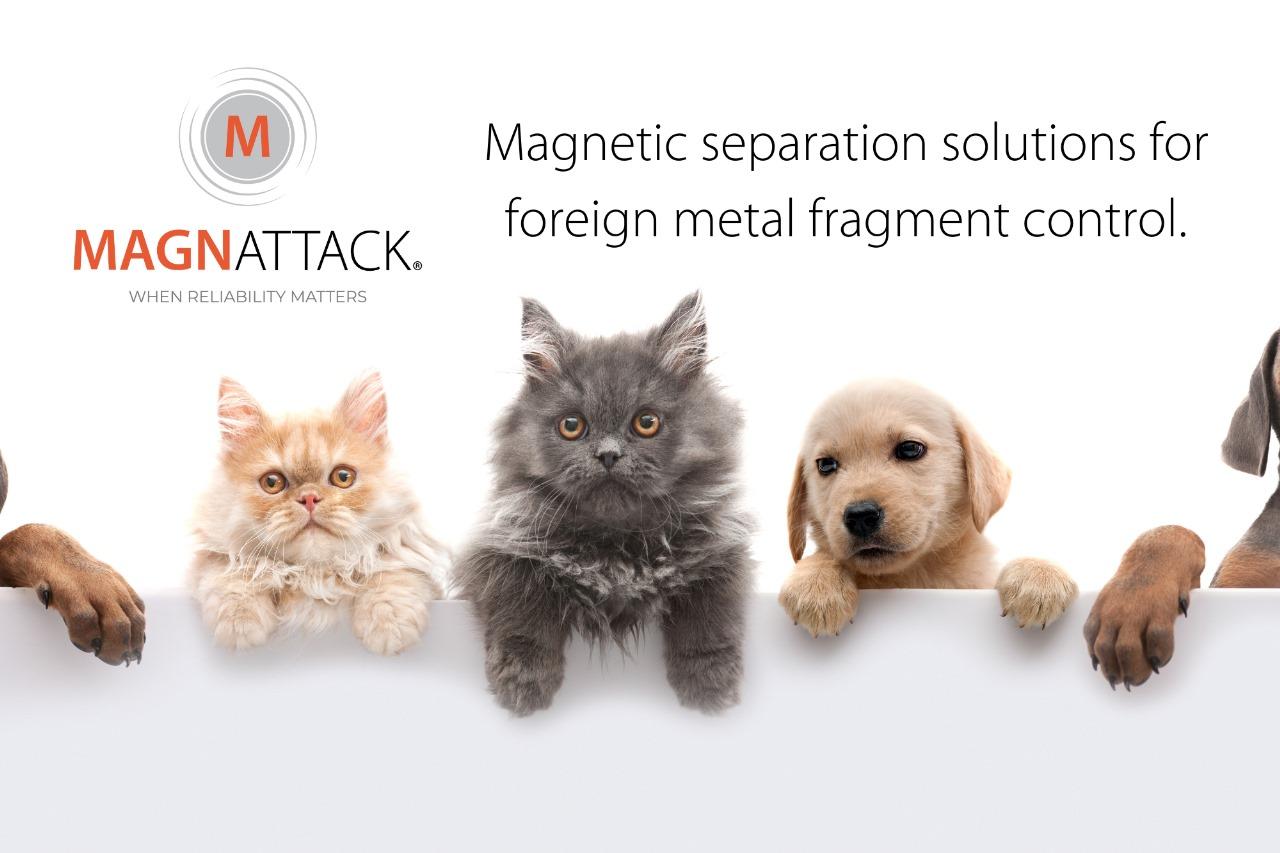 Manufacturing Process
Manufacturing Process
5+ MIN
13/11/2024
Improving product purity in pet food with magnetic separators
More 'humanised' pet foods have become available on the market and are becoming increasingly popular among pet owners, who want the very best, healthy meal options for their beloved pets.
We have seen a change in quality control in the pet food and meat rendering industries, with a heightened focus on product purity, including metal fragment control.
These industries tend to have high levels of metal contamination in their product, as the meat and bone meal product can be very abrasive to process and tends to wear down machinery more quickly than some other product types. The contamination can originate from various stages of processing, as well as from the product itself, so it is important to install metal fragment controls such as magnetic separators or metal detectors in various locations, and in particular, the most final stage in a processing line prior to packing.
How to know where to install magnetic separators?
Choosing a location for food magnets will depend on multiple factors. For example, the amount of metal contamination within the product can play a significant role, as this can affect any existing magnets in the processing line and their ability to collect and retain the contaminants. With a high level of metal contamination, a magnet that requires manual cleaning can get overloaded and 'short out', meaning that it cannot collect and retain more contamination. Any additional metal contamination can then flow past the overloaded magnet and remain in the product.
This highlights the importance of having upstream magnetic separators to offload the final magnets in food processing lines, especially ones that have a high level of metal contamination. The importance of cleaning magnets frequently also shouldn't be overlooked and should be a crucial step in manufacturing procedures.
Another example of a reason to install magnetic separators can be to protect machinery from damage caused by certain non-ferrous or ferrous metal contamination. Depending on the product and processing line, as well as the type of contamination, there are a number of magnetic separation solutions suited for the job.
The Magnattack® Magnetic Separation range for pet food has proven to be very effective in both dry and wet product applications. Let's have a look at each magnetic separation solution and the type of product each magnet is designed for:
Magnetic Separation Examples for Dry Pet Food Products
Magnattack® manufactures a number of magnetic separators for dry pet food processing applications.
Mag-Ram® Self-Cleaning Magnet
The Mag-Ram® Self-Cleaning Magnet has proven to be an amazing self-cleaning permanent magnet and metal fragment control solution for dry products and incoming raw materials such as MBM, protein meal, grain, final kibble, and more.
With the ability to configure the cleaning cycle to suit tonnage rates and contamination levels, the Mag-Ram® gives operators the ability to have the magnet frequently cleaned, and automatically.
This self-cleaning magnet requires zero downtime, with no need to stop production, which is a huge benefit for processors with products high in metal contamination that cannot stop production for frequent cleaning. The rotating magnetic rams ensure minimal product build-up and blockage, and the magnet design provides excellent product stream coverage.
Not only this, but the magnetic rams can be configured to be cleaned one at a time, meaning that your product stream remains covered by the other magnetic rams! You are truly going to want to add this self-cleaning magnetic separator to your materials handling equipment wish list!
Rapidclean® Grate Magnet in Housing
The Rapidclean® Grate Magnet overcomes issues associated with conventional magnetic grates, such as stainless steel sleeves, cleaning difficulties, jamming, safety issues, and more. This permanent magnet consists of open-ended magnetic bars, and once the magnetic drawer is opened, the cleaning is completed away from the product stream, using the Rapidclean® Cleaning Tool.
This grate magnet is designed for dry products, such as meals, powders, grain, and premixes.
Dual Round Nose Plate Magnet System
The Dual Round Nose Plate Magnet System is another industrial magnet design suited for pet food applications. This magnetic separator can be installed in applications processing chicken frames, whole muscle products, poultry, beef, lamb, venison, final meal products and more, prior to expensive processing machinery such as grinders, shredders, dicers, and emulsifiers.
In some applications, especially those with high tonnage and fast-flowing products, fragments can be brushed off plate magnets by the oncoming product and back into the product stream. To reduce this risk, Magnattack® has developed the RE80® Round Nose Plate Magnet. This system features a High-Intensity RE80® Bar Magnet at the end of a standard magnetic plate. The Separation Bar Magnet offers protection against dislodged fragments and prevents them from re-contaminating the food product. When metal fragments are collected by the Separation Bar, they are washed safely to the underside of the magnet and out of the path of oncoming product.
With the deep field capability of the magnetic plate added to the intensive coercive force of the Separation Bar, you gain far superior control over foreign metal pieces and increased protection against contamination.
Spherical Pneumatic Transfer Magnet
The Spherical Pneumatic Transfer Magnet is a powerful magnet designed for high-velocity blow, vacuum, gravity, and pneumatic transfer lines. This magnetic separator suits pneumatically conveyed powders, grains, premixes, and palatant products. The aerodynamic design of this Magnattack® system enables efficient extraction and retention of metal from high-velocity powder lines, without experiencing bulk density problems.
The Spherical Magnet is considered a more hygienic, powerful and superior alternative to traditional bullet-style and cartridge-style magnets.
Magnetic Separator for Wet Pet Food Products
Emulsion & Slurry Pipeline Separator
The Emulsion & Slurry Pipeline Separator is an inline liquid magnet that is ideal for viscous liquid applications including meat emulsions, meat slurries, and more.
It is often difficult to extract weakly magnetic fragments from viscous meat emulsions, slurries, and liquids. In answer to this problem, Magnattack® has developed a special hydro-dynamic magnet system specifically for this purpose. The units are an efficient and sanitary alternative to Liquid Trap/Finger Pot Magnets, which can also be heavy and difficult to clean properly.
This mince separator excels in these applications as it features our patented RE80®HT Acutex® Probe Magnets, which provide superior product-to-magnet contact and more efficient magnetic separation.
The lachrymiform (or 'tear drop') shape of the Acutex® Probe Magnets allow for very smooth transition of viscous products to move around the magnet with minimum resistance to flow. Maximum product to magnet coverage is achieved without causing leaks, blockages, and pressure problems.
The peak (or V-section) of the probe is faced towards the oncoming product stream, ensuring that collected magnetic fragments are washed to the back of the probe and safely retained until cleaning operations are underway. This feature greatly reduces the risk of recontamination caused by the impact of the product flow dislodging the collected fragments and reintroducing them back into the product stream.
We're here to help! Contact Magnattack® for a consultation, or book in a risk assessment to determine potential gaps in your foreign metal controls.
By: Magnattack
Source: All Pet Food Magazine
 Laboratory
Laboratory
4+ MIN
12/11/2024
Por María Candelaria Carbajo
Biotechnology in the pet food industry
It is a multidisciplinary field that, through living organisms, biological systems, and processes, develops products and technologies that benefit different ecosystems of society, people, and animals. Its main goal is obtaining additives and simulating the natural process of protein synthesis at the cellular level to produce specific protein molecules, as well as to improve the conservation of forage and silos. But its fields of application are very varied, so let's discover some of the most used ones: Specific industries Poultry farming In its function related to protein, it is related to this industry with enzyme use, since using the appropriate ones make it possible to use cheaper raw materials, improving production costs. As an example, we can mention what happens with barley, with high contents of ß-glucans, which birds cannot digest because they lack the appropriate enzymes, and, when solubilized in the intestinal environment, they produce a high degree of viscosity, which hinders nutrient absorption, reducing diet digestibility. This results in dirty eggs, muscle injuries, and more. Pig farming In this case, enzymes are used to complete the enzymatic system of these animals, immature until they are 8-10 weeks old, which means that they cannot completely digest certain nutrients and substances. Enzymes also help with bacterial growth. Ingredients Probiotics and prebiotics These are microorganisms, live or dead, extracts or a combination of some of them, used to promote or improve animal intestinal health and immune system. Prebiotics, for their part, are compounds that promote the growth of these beneficial microorganisms. Acidifiers Acidifiers are rather a type of biotechnology that allows the modification of biological systems' behavior. Alternative proteins One of the most dynamic areas of biotechnology applied to pet food is alternative protein development. Traditionally, animal proteins such as chicken, beef, and fish have been the basis of pet food formulation, but nowadays, topics such as sustainability and animal welfare impact the perception of these animals, and consumers have started demanding other alternatives. In this sense, biotechnology allows the creation of alternative proteins, such as those obtained from insects, plants, cell cultures, and laboratory-grown meat. Personalized microbiomes The microbiome is made up of various microorganisms that live in the digestive tract. It has gained pretty much scientific relevance in animal health in recent years. Biotechnology has enabled significant advances in understanding how microbiomes influence digestion, nutrient absorption, and pets' immune systems, for example. Personalized food There have already been cases in which manufacturers have used DNA analysis and microbiological studies to develop a food formulation for a specific pet. This allows the creation of food formulas that not only meet general nutritional needs but also address particular health problems of animals with delicate health or highly specific conditions. Improved Omega-3 Omega-3 fatty acids are essential for pet health, but are traditionally obtained from sources such as fish, which come from the aquaculture industry. Thanks to biotechnology, genetically modified crops are being developed, such as canola, that produce high levels of this fatty acid, which positions it as a more sustainable source to complete formulations. Sustainability and environmental impact One of the most significant challenges for the pet food industry today is its environmental impact. Biotechnology presents itself as an innovative solution that can, among other items, facilitate carbon footprint reduction and minimize production waste. Production waste An emerging approach is the use of organic waste to produce pet food ingredients. Through biotechnological processes such as fermentation, waste from the food industry can be transformed into proteins, lipids, or carbohydrates. These can be used in new pet food formulas, which contribute to reducing waste and having a more sustainable production chain. Biodegradable and even edible packaging Biotechnology is also being applied to developing materials for biodegradable or even edible packaging, managing to address one of the main problems associated with sustainability and the production of non-renewable or recyclable waste. Innovations in food safety Genetic optimization Biotechnology is playing a crucial role in improving the ingredients used in pet foods. Today, through genetic modification, it is possible to develop crops with improved nutritional profiles, achieving greater resistance to diseases and a lower need for pesticides or fertilizers. Biosensors for pathogen detection We are seeing the development of technologies based on biosensors to detect the presence of pathogens such as Salmonella or E. coli used in real-time during food manufacturing, this will allow faster detection and immediate response to conditions, thereby reducing the risk of disease outbreaks in the target population. Improved natural preservatives Biotechnology has also allowed the development of natural preservatives, used to prolong food shelf life, avoiding the use of chemical additives. These derivatives of plants and other natural organisms are effective in preventing the growth of mold and bacteria, which improves and prolongs final product conservation. Conclusion Advances in biotechnology are transforming the pet food industry. This discipline offers innovative solutions to improve pet health, promote sustainability, and ensure food safety. As it continues to evolve, it will keep creating a path to optimize the industry's proposals for pets and, therefore, we will continue to grow together as a market that seeks to offer increasingly safer, efficient, specific, and sustainable solutions. Source: All Pet Food Magazine
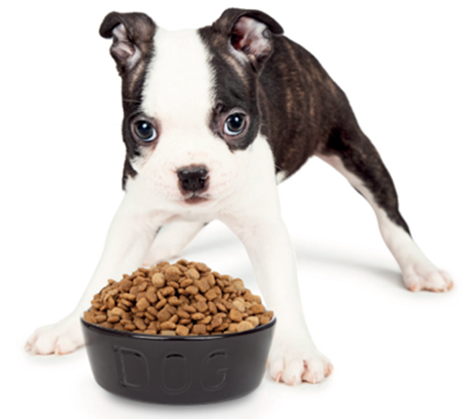 Coating
Coating
4+ MIN
11/11/2024
The importance of pet food coating: A technical overview
What is kibble coating?
Pet food coating, also commonly referred to as palatability of the kibble, is a crucial practice in the pet food industry, used to enhance the energy and nutritional value of the food.
This technique involves the addition of animal and vegetable fats and oils, which are essential for meeting the specific energy requirements listed on product labels. Besides improving palatability, coating with oils provides essential fatty acids for your pet's health and enhances the texture of the kibble.
When and how are fats and oils added?
Some of these fats and oils can be incorporated during the mixing or conditioning phases before extrusion. However, excessive liquid addition at this stage can compromise the formation of the kibble. Therefore, the best method is to apply the lipids after the kibble has been formed, typically after the drying phase and before cooling. Commonly used fats include: chicken oil, lard, pork fat, and fish oils. Vegetable oils such as canola, sunflower, soybean, palm, and coconut are also widely used, depending on local availability and manufacturer preferences.
For dog kibble, the typical oil addition range varies based on factors such as geographic location, age, and activity level of the animal. Generally, oil content ranges from a minimum of 1% to a maximum of 14% of the total kibble weight, with some exceptions for working dogs, where oil content can exceed 20%. In contrast, oil inclusion for cat kibble usually does not exceed 5%.
In addition to oils, other additives are applied during the coating process, primarily flavor enhancers and palatability agents. These are often based on hydrolyzed meat, commonly known as "digest", and are available in both liquid and powder form.
The importance of coating
The taste of pet food, especially for cats, is a critical factor for manufacturers, as pet owners are more likely to repurchase a brand if their pets enjoy the food. While ingredient quality is undeniably important, the technology used in production is equally significant. Achieving uniformity is essential to ensure that the entire surface of the kibble is evenly coated, resulting in a consistent flavor throughout each piece.
Oils, in addition to playing a key role in food preservation, provide a uniform color. Inconsistent oil absorption can cause some kibble pieces to appear darker, leading to a perception of lower quality.
This is why precise and careful application of coating is fundamental in pet food production.
Let's explore the most commonly used technologies in the market and which one represents the best solution.
Different technologies for kibble coating
Coating technologies can be classified into two categories: batch coating and continuous coating, each with its own subcategories:
Batch Coater: This method uses a vertical or horizontal mixer to move a weighed batch of kibble, which is then sprayed with a specific amount of oils and flavors. This is generally considered outdated technology that does not ensure good uniformity.
Vacuum Batch Coater: Similar to the batch coater, this technology generates a vacuum during the application process. The vacuum is gently released after the oils are sprayed, allowing the oils to penetrate deeply into the porous kibble. This is the only technology suitable for applying high oil inclusions above 20%. However, when the formula requires low oil additions below 8% (within a range of 5-10% depending on various factors), it can lead to poor uniformity.
Continuous Drum Coater: In this method, the kibble continuously passes through a rotating drum, and additives are sprayed over a large surface area of the food. This is considered an outdated and more economical coating solution. The main limitations of this technology include low flow capacity (typically no more than 3 tons per hour), limited oil addition, and a short retention time during the coating and mixing phases.
Continuous Disc Coater with Spray: In this process, the kibble is continuously weighed and passes through a vertical chamber with a rotating disc that sprays the liquids. The spraying occurs from the center outward, and the kibble falls in a cascading motion, where it is coated by the liquid spray. While this technology can achieve good uniformity, it has two main drawbacks: a tendency to accumulate material in the disc spray chamber and the limitation of a single spray phase, while the market typically requires multiple phases for oils, liquid flavors, and powdered additives.
Continuous Paddle Coater: PLP Systems offers a range of advanced coating technologies, but the MT Paddle Coater stands out as the ideal solution. This innovative system features a double continuous paddle shaft that ensures gentle product handling, precise dosing, and automated retention time adjustments.
The system is equipped with motorized SMOG atomizers positioned at the top, ensuring optimal distribution across various application phases. It can achieve micro inclusions as low as 0.01% with excellent uniformity, adhering to the highest Coefficient of Variation (CoV) standards. Additionally, it supports oil addition up to 15%, making it a versatile and efficient solution for precision coatings.
PLP Systems specializes in both liquids and powders, with a special focus on the pet food and feed industries.
Making kibble tasty and appealing with palatants, whether liquid or powdered, loved by animals is one of our primary goals.
Our cutting-edge solutions ensure that your products stand out in a competitive market, offering superior taste and quality that animals adore.
Whether you're looking to improve your current production line or explore innovative methods to increase product appeal, our technologies offer the reliability and excellence you need.
Need more information or want to dive deeper into our coating systems?
Don't hesitate to contact our experts. We're here to provide tailored solutions and answer all your questions.
Call us today at +39 0523 891 629 or email us at [email protected] for a free consultation.
We're here to help you find the perfect solution for your needs!
Source: PLP Systems
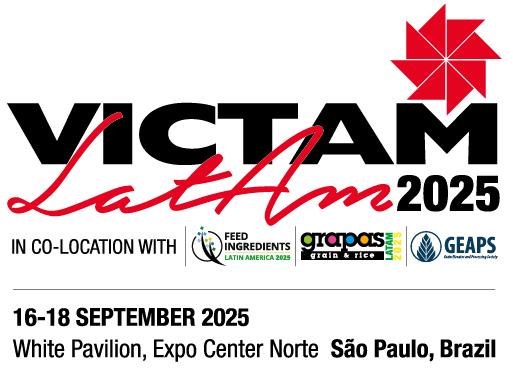 Market Information
Market Information
3+ MIN
11/11/2024
VICTAM LatAm and Feed Formulation Latin America Establish a Long-Term Partnership with Feed Technology Institute (FTI)
The organizers of VICTAM LatAm have announced a strategic collaboration with the Feed Technology Institute (FTI), an institute created by Evonik and DSM-Firmenich in partnership with Nutrall, a company incubated at the Federal University of Paraná (UFPR). This initiative aims to address the increasing demand for expertise in feed production processes, while also advancing the development of a pilot feed plant at UFPR to foster research and extension projects for students. In 2023 and 2024, FTI trained over 500 students through its specialized courses and attracted more than 700 attendees across two editions of the Feed Technology Symposium in Curitiba. The symposium's second edition concentrated on optimizing feed production technologies, with a focus on dosing, mixing, and facility layout. The partnership with VICTAM in Latin America will extend this technical expertise to the São Paulo event, with a particular focus on feed formulation, new ingredients, and additives, aligning with the debut of Feed Formulation Latin America. This parallel event will concentrate on ingredients, additives, formulation, and innovation for feed mills across various species and types. 'After the remarkable success of the first edition of VICTAM LatAm, we recognize that attendees seek comprehensive solutions in one place. Therefore, the combination of VICTAM LatAm and Feed Formulation Latin America will create the largest and most complete international event for new technologies, equipment, and ingredients in the feed industry in Latin America,' says Cassiano Facchinetti, Managing Director of Interlink, the Latin American partner of Victam. 'This partnership is crucial for the market, as it allows us to deliver a high-level content-driven event targeting formulators, nutritionists, animal scientists, veterinarians, and R&D professionals directly involved in feed production within both industry and farming sectors,' adds Facchinetti. 'The 2025 edition will present the latest advancements and their impact on feed mills and animal nutrition. The program is being carefully curated to address critical aspects of feed production and their effects on animals,' highlights Professor Alex Maiorka of the Federal University of Paraná (UFPR) and member of FTI's Scientific Committee, who is responsible for symposium planning. Marco Lara, Feed Applications and Technology Manager at Evonik and member of the Organizing Committee, emphasizes the symposium's objective to foster discussions on key trends and technologies in animal nutrition. In addition to being a hub for knowledge exchange, the event has a philanthropic component. "All proceeds from the symposium will be allocated toward the construction of a pilot feed factory at UFPR," says Lara, stressing the practical outcomes of this intellectual collaboration. The 'VICTAM-FTI Animal Nutrition and Formulation Seminar,' as it will be titled, will cover a broad spectrum of topics including new ingredients, additives, raw materials (e.g., sorghum, DDG), processing methods, nutritional profiles, formulation modeling, minerals, vitamins, enzymes, amino acids, and other current and pertinent topics for this sector. The full agenda will soon be available at www.feedformulationlatam.com. Event: VICTAM LatAm 2025 / FEED Formulation Latin America 2025 When: September 16-18 - 2025 Where: Expo Center Norte – São Paulo – Brazil. About the organizers: VICTAM Corporation is a Dutch organization established in 1964, part of the Victam Foundation. The Victam Corporation organizes events for animal feed and flour milling in Europe, Asia, Africa, and Latin America. In 1965, the first VICTAM exhibition was held in Utrecht, the Netherlands. The first event in Bangkok, Thailand, was launched in 1994, and in Istanbul, Turkey, in 2021. VICTAM Foundation's mission is to provide financial support for innovative projects to entities such as institutes, universities, and private companies, as well as offering individual scholarships. The Foundation aims to make positive contributions to the technological advancement of industrial sectors related to animal feed and milling of grains and other raw materials, in the broadest sense of the term. INTERLINK Exhibitions is the local partner of VICTAM in Latin America. With over 25 years of experience, INTERLINK specializes in organizing technical and business events and conferences in Brazil, South America, and globally. The company focuses on the conception, management, and execution of high-quality B2B events that foster networking and business generation for companies and markets. For more information, please contact: Kalasina Manupassa, Marketing VICTAM WorldWide [email protected] Jaqueline Rodrigues, Marketing INTERLINK Latin America (Partner of VICTAM) [email protected] Source: VICTAM LatAm
 Market Information
Market Information
4+ MIN
07/11/2024
Symrise continues strong profitable growth course
Symrise continued its profitable growth trajectory in the first nine months of the year, achieving organic sales growth of 11.1%. Considering portfolio and exchange rate effects, Group revenue rose to €3,824 million in the first nine months (9M 2023: €3,610 million), a plus of 5.9% compared to the year-ago period. Both segments contributed to the positive development and increased sales in a global economic environment that remained challenging. In the third quarter, overall sales increased organically by 10.2%. Despite negative exchange rate effects of 4.0%, sales grew by 5.2% in the reporting currency. Against the backdrop of robust organic growth, Symrise has specified its organic growth target, sales expected to come in at around 7 %.
Jean-Yves Parisot, CEO of Symrise AG: "Symrise was able to seamlessly continue the positive business development of the past months in the third quarter. Despite the current volatile market environment due to geopolitical tensions and continued inflation pressure, we are confident for the rest of the year and ex-pect robust demand. Our diversified portfolio and broad, international footprint will continue to help us re-alize our growth potential and create sustainable value this year. We are firmly convinced that we have set the right course for the future."
Sales development by region
The strongest organic growth was recorded in the Latin America region with 27.4%, followed by the Asia/Pacific region with 11.2% and EAME (Europe, Africa, Middle East) with 11.1%. The main growth drivers were the Food & Beverage, Fragrance, Aroma Molecules and Pet Food business units. The North America region achieved organic growth of 2.3%, driven primarily by the Food & Beverage and Aroma Molecules business units.
High growth in food, beverages and pet food
The Taste, Nutrition & Health segment increased sales organically by 10.4% in the first nine months of the current fiscal year. In the third quarter, organic growth was 11.3%. Taking into account portfolio and currency effects, the segment's revenue rose to €2,349 million in the first nine months (9M 2023: €2,267 million). The portfolio effect from the sale of the beverage trading business in the UK within the Food & Beverage business unit had a negative impact of € 27 million on sales development.
The Food & Beverage division achieved double-digit organic growth in percentage terms. Strong growth impulses came from the application areas for sweet and savory products and beverages. All four regions, especially the EAME region, achieved high growth. The Naturals application area increased its revenues, especially in the North America and EAME regions.
The Pet Food division also achieved double-digit organic growth in percentage terms in the first nine months. Sales development was particularly dynamic in the Asia/Pacific and Latin America regions, with double-digit organic growth.
Sales development in the Aqua Feed business unit recorded declining organic growth. As part of the fur-ther portfolio streamlining with a focus on high-margin growth areas, Symrise intends to sell the business.
The probiotics business, which includes the majority stake in the listed company Probi AB, Lund, Swe-den, generated slight growth, driven by the EAME region.
Strong sales growth in Consumer Fragrance and significant recovery in Aroma Molecules
The Scent & Care segment, which manages the fragrances, perfumery applications and cosmetic active ingredients business, achieved organic sales growth of 12.2% in the first nine months and 8.4% in the third quarter respectively. Taking into account portfolio and currency effects, revenue for the first nine months amounted to €1,475 million (9M 2023: €1,343 million).
The Fragrance division increased its sales organically in the double-digit percentage range in the first nine months. In particular, the Consumer Fragrance application area achieved double-digit percentage growth. The EAME, Asia/Pacific and Latin America regions in particular experienced very high market dy-namics. The Fine Perfumery application area also continued its very positive development and achieved high single-digit percentage organic growth. Here, the Latin America and Asia/Pacific regions recorded good growth. The Oral Care application area achieved single-digit percentage organic growth, with good growth especially in the North America and Asia/Pacific regions.
Sales in the Aroma Molecules division recovered significantly in the first nine months of the current year. While the market environment continues to prove challenging, the resumption of production in Colonels Island, USA has resulted in a significant year-on-year increase in revenue. High double-digit growth fig-ures were achieved in all regions.
Sales in the Cosmetic Ingredients division continued to develop strongly with high single-digit percent-age organic growth. Revenues increased significantly in the EAME, Asia/Pacific and Latin America re-gions. Only the North America region showed just a slight year-on-year growth. The application areas for micro-protection and actives and botanicals also recorded very strong growth impulses.
Symrise specifies growth target for 2024
Based on the good business performance in the first nine months, Symrise is specifying its sales target for the full year 2024. The Group is now aiming for organic sales growth of around 7%. The Group's long-term organic growth expectation of 5% to 7% (CAGR) remains unchanged. The long-term EBITDA mar-gin is expected to be in the range of 20% to 23%.
Source: Symrise AG
 Packaging
Packaging
3+ MIN
07/11/2024
Comprehensive advice and suitable customer service packages: How STATEC BINDER: ensures the reliability and operation of your systems
Comprehensive advice and planning
STATEC BINDER supports its customers right from the planning phase. In addition to detailed advice and order clarification, the company also offers comprehensive and informative project management, where particular emphasis is placed on partnership-based
communication. This ensures that the selected machines are perfectly matched to the specific requirements of the customer, production and plant conditions. This process provides customers with perfect support right from the order placement stage and tailormade
systems from which they benefit in the long term.
Installation and commissioning
STATEC BINDER offers professional installation and commissioning of the systems. The trained team ensures that the machines can be put into operation quickly and smoothly so that production can start without delays. Close cooperation with the customer during this
phase is particularly important and ensures that all technical requirements are met and that the machines continue to work optimally in the future. This phase also includes training personnel on machine operation so that operators can use the machines efficiently and
safely. Dedicated training packages offer the opportunity to provide new employees with special training for the machine, even if the machine has already been in operation for some time.
Maintenance and spare part deliveries
Regular maintenance of machines is crucial to ensure their performance and minimize downtime. STATEC BINDER offers preventive maintenance programs that are individually tailored to the customer's needs. Special service appointments by experienced technicians
ensure that the machine can work at the best possible output. Among other things, wear parts can be replaced as a preventative measure. These programs help to identify and rectify potential problems at an early stage before major malfunctions occur. In addition, STATEC BINDER guarantees a rapid supply of spare parts to ensure machine availability at all times.
Remote maintenance and technical support
STATEC BINDER also offers comprehensive technical support that responds quickly and easily to customers' needs. The company's technicians can access the machines directly via remote maintenance systems to diagnose faults and rectify problems immediately. This service minimizes downtime and ensures that production processes are disrupted as little as possible.
If there is a fault or problem that needs to be rectified directly on the machine itself, STATEC BINDER also offers to have a service technician on site as quickly as possible to help customers. This is a customer service program that many comparable companies do not offer and of which STATEC BINDER is particularly proud. In this way, the company sets itself the goal of achieving the best possible customer satisfaction.
Modernization and retrofitting
Even after years of operation, STATEC BINDER offers options for modernizing and retrofitting the systems so that the control system and electronics remain state-of-the-art.
This can be done, for example, by integrating new technologies or adapting to changes in standard parts. This ensures that the machines remain competitive and state-of-the-art in the long term. This also has the advantage that common standard parts, such as spare or wear parts, can be purchased cost-effectively.
Conclusion
With its comprehensive customer service packages, STATEC BINDER ensures that its customers' investments are optimally protected. From the initial consultation and installation through to maintenance and modernization - STATEC BINDER supports its
customers throughout the entire life cycle of their machines and ensures that they always work efficiently and reliably.
Source: Statec Binder
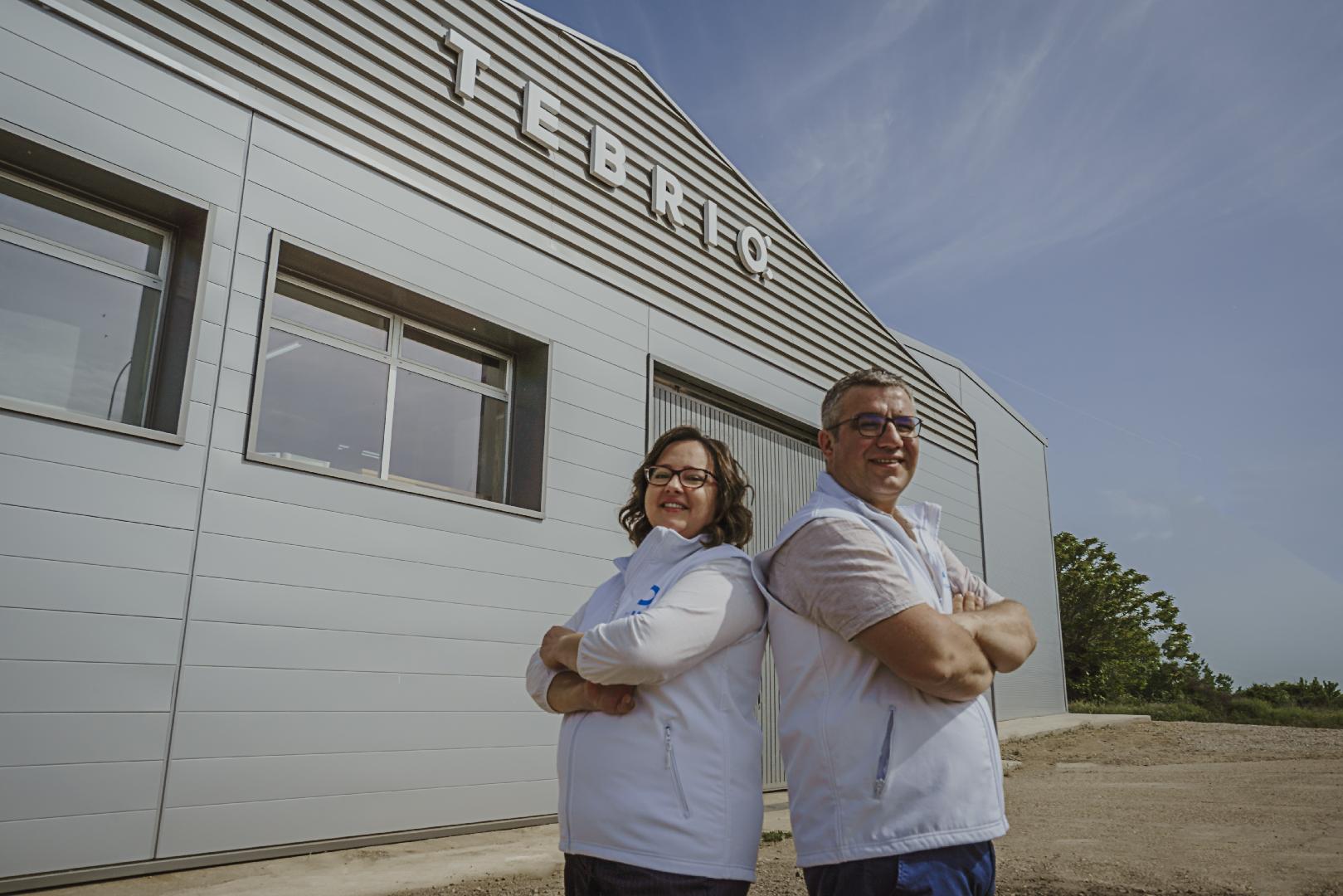 Insect Based
Insect Based
4+ MIN
06/11/2024
Tebrio secures €30 million in funding from Banco de Santander, Sodical, GPC and CDTI
Salamanca, October 29, 2024. The biotechnology company Tebrio has successfully closed a €30 million funding round. Investors in this round include Banco de Santander, Sodical Instituto Financiero de Castilla y León, GCP, and the CDTI Innvierte Economía Sostenible closed-end collective investment company.
Tebrio, a global leader in the industrial production of Tenebrio molitor, will allocate the capital raised from this funding round to significantly increase its production capacity and optimization at its new 90,000 square meter facility. Construction is already underway in Salamanca. With this new plant, Tebrio will be able to produce over 100,000 tons of product annually, meeting the high levels of production and commercialization demand already committed to its current clients.
"This new round of investment in our company validates our industrial model based on proprietary technology. A model that allows us to produce at competitive prices in the markets where we operate, thus serving as a platform to expand our operations to different geographic markets," highlights Adriana Casillas, CEO and co-founder of Tebrio, a company that also maintains Caixa Capital Risc as a shareholder.
"Through Innvierte, CDTI has been a shareholder in the company since 2020. Our participation in the current round reflects the company's and its founders' ability to position themselves in an area that we consider strategic with a disruptive and innovative approach. We want to help them become a key player in a sector that we consider strategic at a national level," says Andrés Ubierna Gorricho, Head of Capitalization and Technology Transfer at the Center for Technological Development and Innovation.
Jesús García, CEO of GCP Consulting, points out that "after 30 years of experience in the agri-food industry, and after evaluating various investments in the insect sector, we chose Tebrio due to the quality of its products, coupled with an interesting financial return. All of this is linked to the high biological safety guarantees offered by the Tenebrio molitor insect, which guarantees our investment. We are proud to work with partners who share our values and are committed to developing solutions that benefit everyone. Together, we are sowing the seeds of positive change, cultivating a more just and healthy world for generations to come".
Tebrio, world leader in the production and processing of the Tenebrio molitor insect, currently has a 3,500 square meter production plant, from which hundreds of tons of protein, fat, biofertilizer, and chitosan are produced each year. Tebrio began operations in 2014 with the mission of providing innovative and 100% sustainable solutions for the agri-food industry. Its areas of focus are food safety, sustainability, and the circular economy model.
-----------------------------------------------------------------------
TEBRIO
Tebrio is the world leader in the production and processing of the Tenebrio molitor insect. Based in Salamanca, Spain, it utilizes proprietary patented industrial technology and machinery in over 150 countries to address the technological challenge of industrializing the mass breeding of insects. Its processes allow for the commercialization of four main products: protein and fat for animal feed; organic fertilizers for soil and plant nutrition; and polymers for various industrial biotechnological uses. All of this is based on sustainable industrial solutions that position Tebrio as a zero-waste company, with a carbon footprint lower than any other natural-based solution. Tebrio requires 90% less water and 80% less arable land, so its products, when used as raw materials for the base of animal and plant feed, help reduce the carbon footprint of current livestock and agricultural models. Additionally, the company does not emit greenhouse gases, including methane and ammonia.
CDTI
The CDTI Innovation is the Agency of the Ministry of Science and Innovation that supports knowledge-based innovation, providing advice and public funding for innovation through grants or partially repayable aid for innovation projects and managing pre-commercial public procurement projects. Additionally, through the Innvierte Economía Sostenible initiative, it supports and facilitates the capitalization of technology companies. To date, the CDTI, through Innvierte, has committed more than €390 million to 20 investment vehicles that have invested in more than 240 companies, and through its co-investment line has directly committed more than €300 million to over 120 companies. CDTI Innovation also facilitates the internationalization of R&D and innovation projects of Spanish companies and entities and manages the participation of Spanish companies in international R&D organizations such as Horizon Europe and Eureka, and in the Space Science and Technology industries. The Center for the Development of Technology and Innovation, E.P.E. (CDTI) is a public entity under the Ministry of Science and Innovation.
GPC
GPC is a Family Office based in Madrid, although its operational offices are located in Salamanca. Given the professional nature of its members, GPC's main projects include strategic investments in start-ups and companies related to the agri-food industry, in the Pharma world as well as in the field of renewable energies, without detriment to any other business project and with a clear focus on sustainability and social impact.
Source: Tebrio
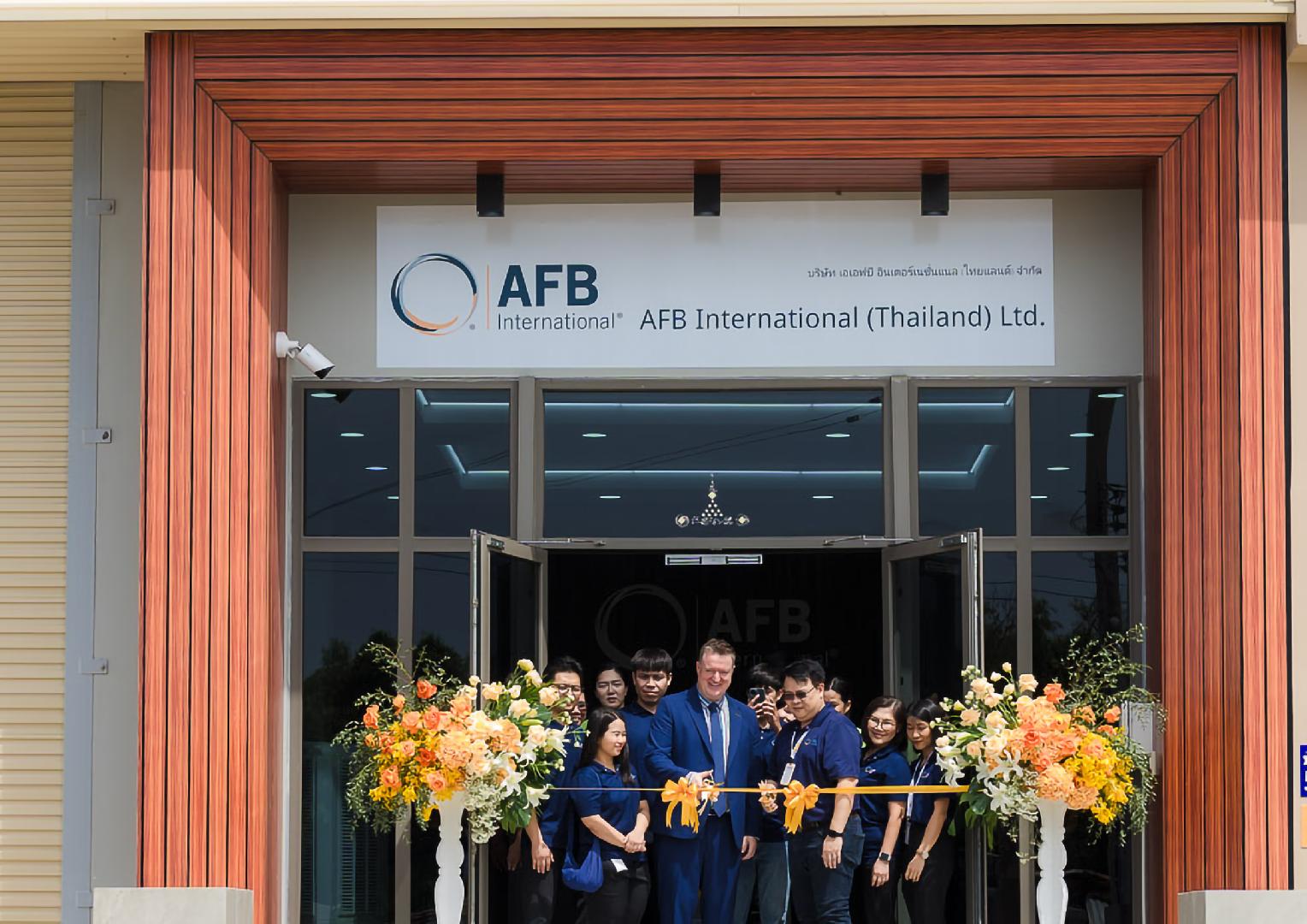 Palatants
Palatants
2+ MIN
05/11/2024
AFB International Celebrates Grand Opening of Asia Pacific Regional Headquarters and Manufacturing Facility in Thailand
With this facility in Asia, AFB will be able to enhance operational efficiency and ensure a more reliable supply chain, allowing for faster delivery and improved service. 'The opening our facility in Thailand marks a major milestone in our global expansion efforts. Our customers asked us to be local, and now we are! This facility strengthens our commitment to the region, allowing us to better serve our customers with enhanced efficiency, speed, and local support,' said Dale Spence, President of AFB International, reflecting on the milestone. The new facility will serve as the regional hub for AFB International's Asia Pacific operations, bringing together corporate offices, manufacturing, R&D, and quality teams under one roof. 'Thailand, the world's third largest pet food exporter, is an ideal location for our new facility,' said Bas Melssen, General Manager/Vice President of Asia Pacific. 'As a hub for innovation in the pet food industry, Thailand aligns perfectly with our commitment to advancing product development and manufacturing excellence. Establishing our Asia Pacific headquarters here allows us to leverage Thailand's expertise and leadership in the sector, being closer to our existing customers here, while further enhancing our ability to innovate and meet the growing demands of the region.' 'Our Thailand facility is a crucial step in aligning our operational goals with our sustainability objectives,' noted Stephanie Hackmann, Vice President of Global Operations, recognizing the broader impact of the new facility. 'By localizing production, we can serve our customers more efficiently, respond faster to their needs, and significantly reduce transportation-related emissions – a win for both efficiency and the environment.' The opening ceremony welcomed over 130 guests from 7 countries, including representatives from leading pet food manufacturers and trade associations across Asia. Following the formal opening ceremony, AFB will continue the celebration at the company's booth N01 at Pet Fair Southeast Asia 2024, taking place from October 30 to November 1, 2024, at the Bangkok International Trade & Exhibitions Center (BITEC) in Bangkok, Thailand. 'This is a proud moment not only for our company but for the community we are becoming a part of,' Melssen added. 'We welcome all industry professionals to visit our booth, join the festivities, and learn more about the exciting new chapter we're starting with our facility in Thailand.' About AFB International AFB International was founded in 1986 in St. Louis, Missouri, USA with a vision to create the best palatants and make pet food taste great. Today we are an international company with resource centers and production facilities designed to service pet food manufacturers across the world. Our portfolio of palatants are formulated to deliver optimal performance for each customer's unique needs. About Ensign-Bickford Industries Ensign-Bickford Industries, Inc. (EBI), founded in 1836, is a privately-owned high technology conglomerate, which today is focused on space & defense, pet food science, and biotechnology. They participate in businesses that are relevant to the future of the world and have multi-generational growth prospects. Source: AFB International
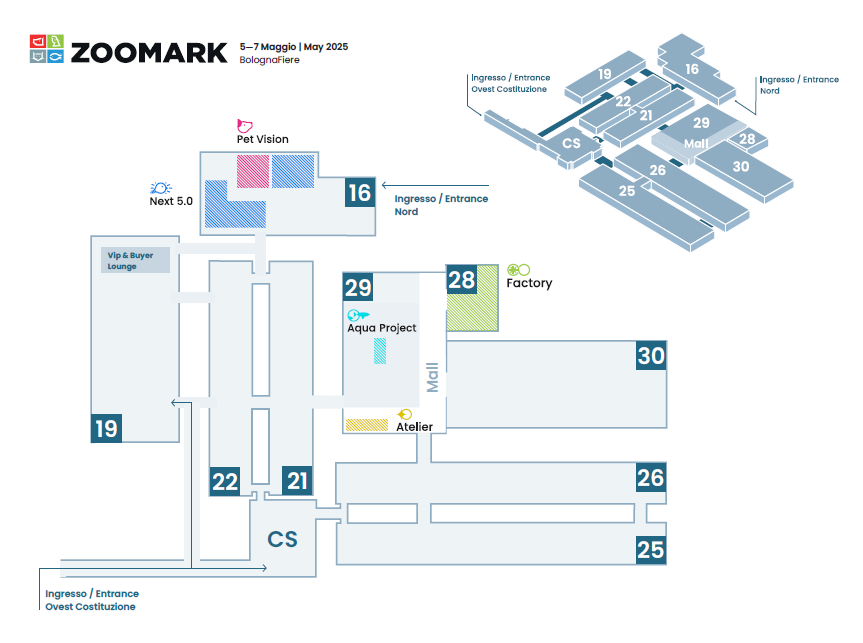 Market Information
Market Information
4+ MIN
04/11/2024
Zoomark just keeps growing
Zoomark is ready to confirm its standing as one of the world's leading pet industry events. The 21st edition will be on from 5th to 7th May 2025 in BolognaFiere. Though there are still several months to go, 80% of stands have already been booked, and registrations are still coming in from all over the world. "The anticipation is already building for our forthcoming event: people in the industry are greatly looking forward to taking part in the show, having an opportunity to gather and look to the future together," commented Pascale Sonvico, Zoomark's Show Office and Sales Manager. "Indeed, after adding hall 28, dedicated to the supply-chain companies, we have just announced another new hall, hall 19. Ideally located to integrate seamlessly into our layout, hall 19 is near of the main entrances of BolognaFiere, Piazza Costituzione." In total Zoomark 2025 will thus occupy nine halls and cover an area of 78,000 square metres. Thematic paths Bigger and more functional too: Zoomark's new layout has in fact been designed to help exhibitors and visitors alike get the most out of the event, with a more engaging, efficient floor plan that will enhance the show experience for all the industry professionals coming to Bologna, as explained by Luisa Bersanetti, Exhibition Manager of Zoomark: "One of the new ideas we are working on for the forthcoming event is creating specific pathways dedicated to the most interesting market trends, such as sustainability, quality and innovation, designed to optimise and streamline the visitor's experience and ensure that exhibitors in all halls are guaranteed a steady flow of traffic. At the same time, we intend for these themed routes to be a precious resource for those looking for new opportunities and ideas to make their business stand out: they will guide retailers, buyers, distributors and importers to the companies and products on show. We believe that this approach, and the revamped layout, will help further optimise the flow of visitors and contribute to the event's success." The special areas The 2025 edition of Zoomark features five special themed areas, designed to anticipate new trends and innovations in the pet industry, with the aim of boosting and facilitating business. One of the new areas is Next 5.0, devoted to pet-tech, a rapidly growing segment which places technology and innovation in the service of pets' well-being. This area will host both start-ups and established firms, ready to present the most advanced solutions for pet health and safety. Two very popular features will also be returning. The first is Pet Vision, dedicated exclusively to products and services launched in the months before the event, and the latest trends in the sector (the 2023 show presented more than 500 innovative ideas), accompanied by a competition to reward the best product innovations. Another crowd-pleaser is Aqua Project, showcasing the aquarium and terrarium industry, which will host not only a display area but also training and educational sessions for specialised retailers. The two brand-new launches of 2025 are Factory, an area completely dedicated to the supply-chain, and Atelier, which will host the very top of the range in pet wellness and comfort. Zoomark is not only going to be bigger, but also more content-rich, thanks to a format that is much appreciated by the industry. "We have launched our series of webinars focused on key issues regarding the market, which will be running till May 2025, and we are currently working on the events that will take place during the show and fleshing out new projects that will add value to the user experience, making Zoomark not just the leading meeting place for the industry, but also a platform for discussion, development and innovation" – added Pascale Sonvico – "We are ready to offer an even more inviting, engaging environment, where it will be possible to explore the latest trends, find inspiration and develop your business". Buyers from all over the world expected One of the key assets of a successful trade show is undoubtedly the attendance of major buyers. Zoomark has boosted its International Buyers Program, adding new activities designed to "guarantee the presence of a growing number of selected top buyers from the main and emerging markets, thus helping connect supply and demand", explained Bersanetti. The programme includes the addition of dedicated services to encourage direct interaction between buyers and exhibitors. Thanks to our B2Match matchmaking platform, buyers and companies will be able to prepare for the show in advance, and plan and manage their personal schedule of meetings. Our partnership with the offices of the Italian Trade Agency in key pet industry markets will bring more international buyers to Bologna. At Zoomark 2025, delegations of buyers, retailers and distributors from the main markets will be primed to meet exhibitors to work on distribution proposals and solutions. Bersanetti concluded: "We have arranged special welcome and hospitality packages in Bologna during the event. The focal point for all the activities planned for buyers will naturally be the VIP & Buyers Lounge, a meeting place and networking hub that has always been much appreciated." Zoomark 2025 is already shaping up to be a great success: the place to be to tap into the buzz and the innovative, dynamic outlook of the pet industry. ABOUT US Zoomark is the b2b trade show for pet food and pet care, on in BolognaFiere from 5th to 7th May 2025. For 21 editions it has been an international meeting point between pet industry manufacturers and distributors: the ideal place to build new relationships, keep up to date with key developments, and connect with global players looking for new partners and business opportunities. Source: Zoomark
 Interviews
Interviews
4+ MIN
04/11/2024
The interview: Maximilian Furley
Understanding the 'new' consumer demand that was booming and changing after the pandemic, Premier Tech was in the field, listening to its customer voices, and was committed to making it a reality. Through strategic adjustments in sales coverage, operations, and service support, Premier Tech LATAM has become one of the fastest-growing regions globally. Since 2022, they have seen remarkable growth, with 2023 marking their best year since establishing their first manufacturing facility in Brazil in 2015, followed by Mexico in 2017. - How does Premier Tech incorporate sustainability into its technological advancements and business practices? - Premier Tech is committed to continuously advancing sustainability, embedding it into every facet of our operations. From developing energy-efficient technologies to utilizing recyclable materials and minimizing waste, we design solutions that not only boost productivity but also reduce environmental impact. By supporting a circular economy and extending the lifespan of our products, we are dedicated to building sustainable processes that contribute to a greener future. Our commitment is reflected in both our technological innovations and environmental preservation initiatives, as we strive to make progress every day. - What roles do innovation and research play in maintaining Premier Tech's competitive edge in the technology industry? - Research and innovation are at the heart of Premier Tech's strategy. The company operates advanced laboratories and multidisciplinary teams dedicated to developing new technologies that enable greater automation, precision, and sustainability in industrial processes. By continuously focusing on R&D, Premier Tech stays ahead of market trends such as digitalization and Industry 4.0, offering solutions that not only enhance efficiency but also create long-term value for our clients, while remaining committed to environmental sustainability, keeping Premier Tech at the forefront of the global technology industry. - How do you see technology developing in the pet food industry? - The pet food industry is transforming significantly, with a growing demand for wet and highly customized products. Premier Tech, attuned to these changes, is already developing end-of-line equipment specifically to meet the rising demand for wet products, offering solutions that ensure flexibility and efficiency in packaging processes. Additionally, with a focus on comprehensive customer service, the company invests in technologies that enhance quality, sustainability, and process automation, keeping Premier Tech at the forefront of innovation in the sector. - What are the most significant challenges for the company these days? - One of the biggest challenges faced by the industry is balancing the need to handle a wide variety of SKUs while maintaining operational efficiency. Although some solutions offer flexibility to manage this diversity, they do not always guarantee the continuous efficiency of production lines, which can lead to higher maintenance and operational costs in the long run. At Premier Tech, our focus is on providing robust and reliable equipment that ensures maximum productivity, regardless of the SKU complexity. We are committed to helping our clients keep their operations efficient and competitive, backed by a strong after-sales support system dedicated to their production success. - From your experience, what do you think will be the biggest challenge for the whole industry in the coming years? - The biggest challenge will be adapting to emerging technologies while staying sustainable. The rapid digital transformation, driven by automation, artificial intelligence, and data-driven solutions, is reshaping the future of industries. As companies embrace these advancements, they are also under increasing pressure to adopt more sustainable practices and reduce their environmental impact. Achieving this will require significant investments in innovation and a comprehensive restructuring of industrial operations. Balancing technological innovation, sustainability, and operational efficiency will be a key challenge in the coming years. - What is the company currently working on for the near future? - Premier Tech is constantly investing in innovations that enable greater automation, flexibility, and efficiency. The company is developing new equipment that responds to emerging market demands, such as technologies that support sustainable packaging and more agile production lines. Premier Tech is also integrating AI, connected machines, and robotic solutions into its portfolio, driving even greater advancements in automation and smart manufacturing. Additionally, Premier Tech Systems and Automation has recently launched a new training offering designed to help clients enhance the performance and profitability of their Chronos™ equipment. This training program is part of the company's exploration of innovation, combining both new and existing training modules into a unique commercial offer that provides comprehensive support for clients. These new commercial offers reflect Premier Tech's commitment to value creation, focusing on both tangible and intangible aspects, and reinforcing the foundation of its innovation approach. Source: All Pet Food Magazine
 Market Information
Market Information
3+ MIN
30/10/2024
Analysis: Diving into Spanish pet parents’ generational gap
With 49% of Spanish households owning a pet, the country is one of the largest markets in Europe. According to the European Pet Food Industry Federation (FEDIAF), its dog population is just below that of Germany and the UK. The importance of pets in Spaniards' lives can be seen in the fact that most have owned a pet at some point. A study by the Spanish Association of Distributors of Pet Products (AEDPAC) shows that only 22% of those who have pets are first-timers. However, age reveals differing attitudes toward pets regarding feeding habits, expenses and even holidays. Feeding and spending differences The study analyzes pet parents by generation and highlights differences in purchasing behaviors. The youngest generation (18 to 30 years old) is the most likely to spend over €100 ($108.74) on pet food. Whether they own a cat or a dog also plays a role. Overall, pet parents 30 and younger are the biggest spenders on both their dogs and cats. On average, they shell out €74.70 ($81.23) per month per dog, with pet parents aged 31–45 spending €61 ($66.33) monthly. Interestingly, those aged 18-30 also have the highest proportion of pet parents forking out over €100 ($108.74) per month on dog food (16.8%). When it comes to spending, pet parents over 55 are the generation with the deepest pockets for cat food. In fact, over 1 in 10 (11.3%) spend over €100 ($108.74) on cat food—the highest among all generations. A generation of contrasts, this is also the most frugal, with nearly 3 out of 10 spending less than €20 ($21.75) per month on their felines. In terms of overall monthly expenditure, Spanish pet parents aged 18-30 rank the highest in their monthly cat food spending, with an average of €67.70 ($73.62). They are also the generation that spends the most (25%) in the €76–€100 ($82.64–$108.74) bracket for cat food. Regarding the type of food, dog parents are most likely to change the diet they currently feed their pets, with 12% planning to do so this year. By age group, the youngest generation has the highest proportion of owners considering a diet switch this year (24%). The proportion for cat owners is far lower—only 4% plan to switch their dogs' food this year. Among these, 15% of pet parents aged 46–55 are most likely to do so. Pet ownership information So, where do pet parents get their information from? While vets are among the most trusted professionals (69%), they are particularly trusted by the older generation of 55+ (77%). Pet shops come second, with 42% of pet parents making use of them. Unsurprisingly, social media (23%), TV shows (16%) and apps (18%) are more popular with those under 30. This group and those aged 31–45 (16%) also use online forums. Work and holidays There is no doubt that all pet parents love their cats and dogs. However, there is a generational gap regarding taking pets to work. While 60% of the pet parents aged less than 30 would like to take their furry friends to work, the proportion drops to 33% in the 46 to 55-year-old group, the lowest among all age groups. Conversely, both this group and those 55 and above wouldn't like it at all (35% and 29% respectively). A similar division can be seen when it comes to holidays. The over 55s are least likely to take pets traveling with them—36% don't take their pets on holidays—whereas this number drops to 21% among the younger generation. This group also values pet-friendly hotels the most (48%). Although almost two-thirds (65%) of pet parents have never considered hiring a trainer, this number is higher among pet parents of more than 55 years old (73.8%) who have never engaged with one. In contrast, the younger generations are the most likely to have thought about it (31% for both generations up to 45 years old), but those 30 and younger have the highest proportion of owners who have actually hired one (15%). Source: GlobalPETS
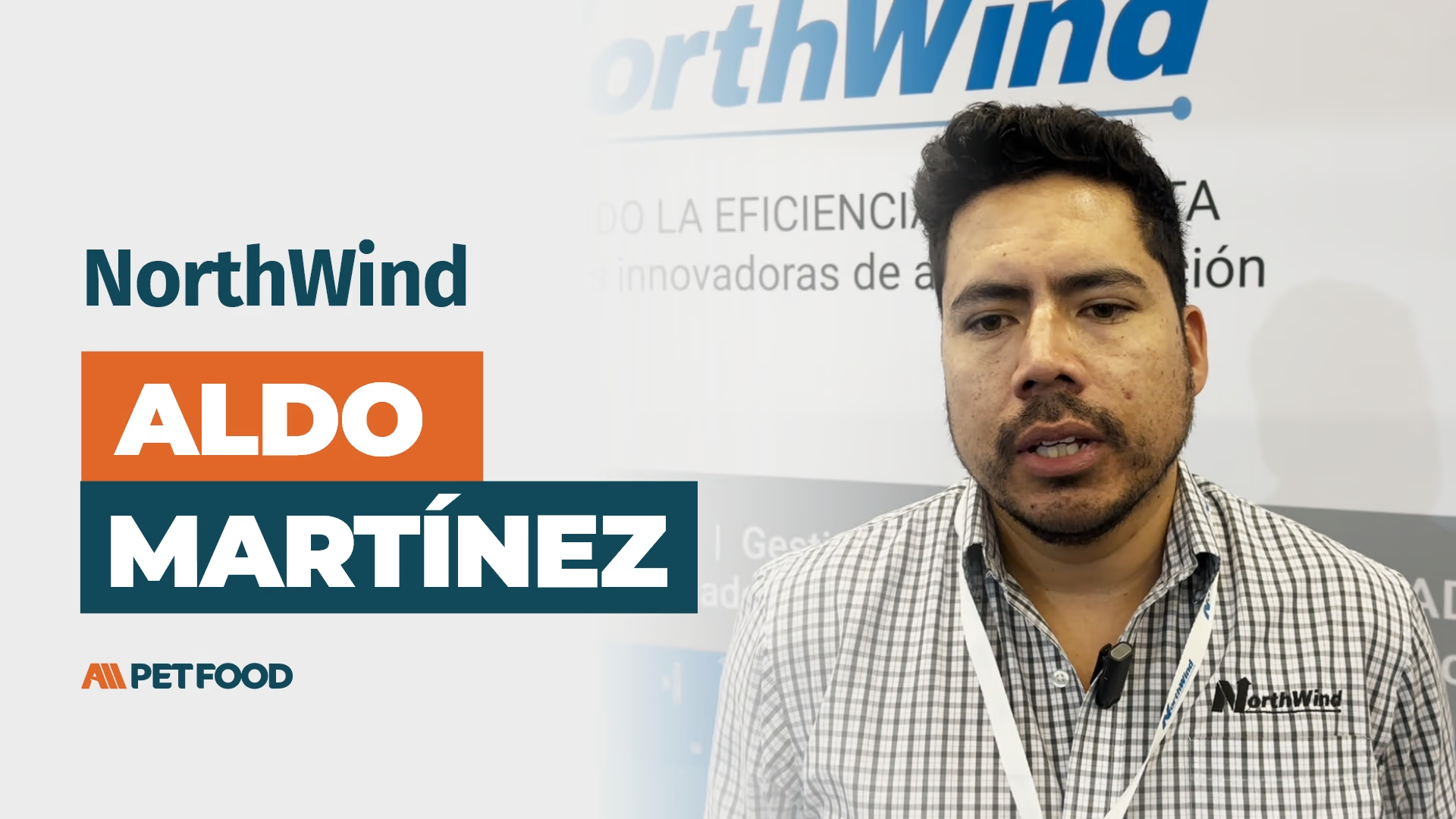 Automation
Automation
2+ MIN
29/10/2024
Automation in pet food: Interview with Aldo Martínez from NorthWind
Seeking constant efficiency, accuracy, and sustainability is the priority in the pet food sector, and NorthWind is in the middle of this transition. We invite you to know Aldo Martínez's point of view, Business Manager, who shares their solutions and their impact in this interview: - What benefits do manufacturers obtain by adopting automatized and IAbased solutions? 'One of the major benefits clients share is the analysis of general data, virtualization, and digitalization of plants. It is a way to analyze the consumption to evaluate general costs of the end-product and how to maximize consumption, energy, and production only with efficiency and performance management.' - Which areas in the production process are positively impacted by these technologies? 'What we have seen is the general analysis of consumption; we analyze the consumption of raw materials, utilities, and reduction management. We offer data visualization and a list of opportunity areas by managing it by end product, recipes, energy consumption, and sustainability, with different improvement areas in different facility sectors to maximize the general process with automation.' - Considering the future, how do you see these technologies evolving in the coming years? 'Now the trend is focused on energy analysis, sustainability, and the environmental impact accompanied by data and consumption analysis. The development of market trends, quality, and exportation are also contemplated, all of which are carried out together with artificial intelligence, market analysis, and new technological trends.' - From NorthWind, are you working on new solutions? 'Working in the technology industry implies constant innovation. We are embarking on a new goal: bringing artificial intelligence to the technology and production market. Due to the amount of information, we seek to use these mechanisms to see opportunities that perhaps the human eye or the mind cannot manage and process. With AI and production mechanisms, we identify hidden areas that are hard to find and maximize the overall efficiency of the facility.' We support NorthWind in recording its success case in PABSA, a pet food manufacturing company that uses its solutions. Source: All Pet Food
 Dogs
Dogs
3+ MIN
25/10/2024
Journal of Animal Science Publishes ADM's Canine Clinical Trial Exploring the Microbiome Effects of BPL1™
CHICAGO—ADM (NYSE: ADM), a global leader in innovative solutions from nature, announces the publication of its first-in-species study of Bifidobacterium animalis subsp. lactis CECT 8145 (BPL1™)1 on adult dogs by the Journal of Animal Science. This pioneering study examined the effects of daily supplementation of both the live probiotic and heat-treated postbiotic forms of BPL1™ on canine health. According to recent ADM global consumer research, 55% of U.S. pet owners have purchased biotics at least once a year because of a professional recommendation2. In many cases, they use biotics to support their pet's digestive or gastrointestinal concerns2. "The popularity of functional ingredients has increased as pet owners seek ways to improve the health and wellness of their pets, yet limited research has been conducted regarding the use of probiotics and postbiotics and their effects on canine health," said Sophie Nixon, Ph.D., Head of Clinical Research for Pet & Animal Well-being at ADM, who oversaw the trial. For this exploratory study, 18 adult beagles and 18 adult English pointers were used in a 3-arm randomized, placebo-controlled, parallel group design, with 12 animals per group. Following a 60-day adaptation period in which dogs were fed a standard diet alone, the dogs were then supplemented with either probiotic or postbiotic BPL1™ or an identical placebo alongside their standard diet for 90 days. Measurements were taken to assess outcome measures relating to a variety of health areas, including fecal fermentative end products and microbiome, insulin sensitivity, serum gut hormones, oxidative stress, inflammatory biomarkers and white blood cell gene expression. Improvements were observed in fecal short-chain fatty acids, as well as changes in microbiome composition and the functional metagenome, when compared to placebo control. Data from the trial shows that both the live and heat-treated forms of BPL1™ can safely be supplemented in healthy adult dogs and support several aspects of gut health. A further clinical study is ongoing to assess additional physiological outcomes, with a focus on metabolic health. "Groundbreaking science such as this canine trial spurs development of ADM's functional ingredients across human, pet and animal nutrition," said Mark Lotsch, ADM's President of Global Health & Wellness. "Beneficial outcomes and ingredient stability of our award-winning BPL1™ solution have been repeatedly demonstrated in previous human clinical trials. We are thrilled to also see promising results for pet health applications." Because heat-treated BPL1™ has a similar effect to live BPL1™ in healthy adult dogs, pet product formulators will have greater flexibility through the manufacturing and supply process, as they don't need to make adaptations for living microorganisms3. Notably, extreme heat from extrusion and baking common in pet food processing can diminish the efficacy of live probiotics. As inanimate microorganisms, postbiotics can confer a health benefit on the host despite these challenging conditions. Learn more about ADM's extensive range of science-backed microbiome solutions for pets here. 1BPL1® is a trademark registered for Biopolis, S.L. in the EU and other countries 2ADM Outside Voice℠ 3Local regulations must be reviewed to confirm permissibility of ingredients for each category About ADM ADM unlocks the power of nature to enrich the quality of life. We're an essential global agricultural supply chain manager and processor, providing food security by connecting local needs with global capabilities. We're a premier human and animal nutrition provider, offering one of the industry's broadest portfolios of ingredients and solutions from nature. We're a trailblazer in health and well-being, with an industry-leading range of products for consumers looking for new ways to live healthier lives. We're a cutting-edge innovator, guiding the way to a future of new consumer and industrial solutions. And we're a leader in sustainability, scaling across entire value chains to help decarbonize the multiple industries we serve. Around the globe, our innovation and expertise are meeting critical needs while nourishing quality of life and supporting a healthier planet. Learn more at www.adm.com. Source: ADM
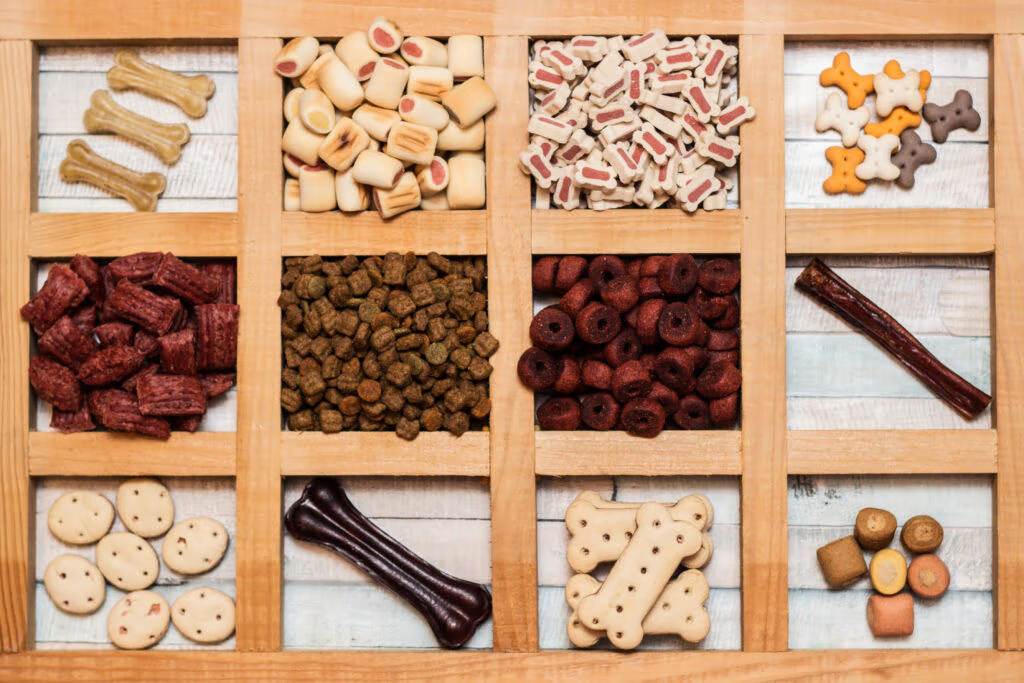 Extrusion
Extrusion
2+ MIN
23/10/2024
New research brief: Dental stick extrusion utilizing spray dried plasma (SDP)
Study objetive The study objective was to evaluate how SDP inclusion with other ingredients impacts texture of extruded dental formulas. Experimental procedure Three formulas were developed utilizing SDP to replace wheat starch (WS) or Arabic gum in the control formula. The formulas were: Control: WS and gum; SDP1: SDP and WS replacing gum; and SDP2: SDP replacing WS and gum. Dental sticks were made at the Extru-Tech technology testing center using a 525 single screw extruder with the product densification unit (PDU) removed and replaced with a mid-barrel valve and 3 cooling heads to cause densification. The sticks were manufactured as solid square sticks. Generally, a single screw with a PDU, or a traditional parallel-shaft twin screw is used to manufacture dental sticks. However, the equipment alterations used worked like a single screw with a PDU; thus, it would be expected that the results would translate to a traditional single screw configuration. Glycerin at 12% (% to dry feed rate) and chicken fat were added to the pre-conditioner at set rates to optimize expansion and product quality. Processing conditions were monitored and adjusted on the various formulations during production to optimize extrusion. Texture was measured on a TA.XT Plus utilizing an adjustable bridge with a rounded-end knife probe for a 3-point bend. Dental sticks of 8 cm in length were placed over the two bridge spans spaced 5 cm apart to measure maximum force (hardness) and work to peak force (work to break) to determine texture parameters. Ten dental sticks per treatment were analyzed. Treatments Dental stick run conditions Results and discussion Summary In conclusion, SDP can be incorporated into dental stick formulas and utilized as a processing aide. Overall, depending on target hardness and ingredient matrix, SDP can be an alternative to various ingredients to maintain or improve product quality. Source: APC
 Other microingredients
Other microingredients
6+ MIN
22/10/2024
All in on alternative proteins
The pet food industry is continually challenged with anticipating future trends and addressing evolving expectations from pet owners, such as a heightened focus on the environmental impacts of the products they purchase—from where and how ingredients are grown to how the foods are produced and packaged. At the same time, pet food brands are navigating ever-evolving regulations to reduce their own environmental impact, while also addressing increasing consumer demands for sustainability. Environmentally conscious consumers as well as people choosing plant-forward lifestyles are fueling rising interest in alternative proteins—including plant-, insect- and cell-based sources. For instance, 42 percent of global pet owners say they want to purchase pet food with sustainably sourced ingredients, and one in five pet owners like to see plant-based or vegan claims on pet products, according to The Humanization of Pets 2023, a report released by market research firm FMCG Gurus. Brands that seize and invest in this new growth frontier will gain a competitive edge to meet pet owner demands. Adopting alternative proteins Plant- and yeast-based proteins can be used in pet food and treats to supplement or replace animal proteins. Even insect protein, like dried black soldier fly larvae (BSFL), is being used in some pet foods today. However, like the human nutrition market, reassurance is needed about the taste and nutrition of pet products made with novel ingredients to influence consumer buying behaviors and garner acceptance. ADM, a global leader in innovative solutions from nature, is investing in research to support the inclusion of alternative proteins in pet food. For example, ADM partnered with researchers at the University of Illinois to determine the biological availability of essential amino acids from various plant- and yeast-based ingredients for use in dog and cat foods. The research, which appeared in articles published in the Journal of Animal Science and Journal of Translational Animal Science in 2020, found that dogs and cats were able to digest and absorb plant-based protein sources, such as soy, just as well as those of traditional animal protein. Notably, ADM conducted a canine feeding study to better understand the nutritional value of flexitarian and vegan dog foods compared to conventional dog food containing animal-based proteins. In the study, dogs were assigned to one of four test foods: a conventional dog food as the control, two flexitarian foods formulated with either pea protein or soy protein and a vegetarian food. Results, published in a 2024 ADM Technical Bulletin, demonstrated that flexitarian and vegetarian dog foods, formulated with low or no inclusion of animal-sourced ingredients, can effectively meet the nutritional needs of adult dogs. These diets were shown to be palatable, digestible and supported a healthy gut microbiome in dogs. "Sustainability efforts, such as emissions reductions, are a key factor both upstream and downstream of the pet specialty sector because environmental impacts are felt all along the supply chain." Insect proteins are taking off Among the insect-derived ingredients currently used in pet products is the black soldier fly (Hermetia illucens). Agtech company Innovafeed is a leading producer of black soldier fly larvae ingredients. Hilucia Protein and Oil contain unique components, including lauric acid, bioactive peptides and chitin. Lauric acid is a medium-chain triglyceride, a fatty acid prevalent in coconut oil, and is being studied for its potential benefits. The black soldier fly expresses over 50 unique bioactive peptides, which are small proteins with unique properties. Chitin acts as a dietary fiber to support digestive health. These components are in addition to the highly digestible essential amino acids that help dogs and cats meet their requirements. ADM and Innovafeed collaborated on a research study carried out at the University of Illinois that investigated the protein quality of BSFL in dogs. The goal of the study was to determine the suitability of BSFL as a nutritious substitution for other commonly used protein ingredients in pet food. One trial measured the digestible indispensable amino acid score (DIAAS), a score based on amino acid digestibility that is used to assess protein quality. DIAAS values for Hilucia Protein were compared to scores for chicken meal, a high-quality common ingredient in pet food, and powdered egg, considered the gold standard for protein quality. Results demonstrated that Hilucia Protein is a suitable substitute for chicken meal in pet foods. A second feeding trial examined dog diets that were specifically formulated for this research, including a controlled diet made with chicken meal, a diet that included 15 percent Hilucia Protein, and another test diet that included 30 percent Hilucia Protein. These levels represented using insect protein as a partial substitution for chicken meal and one that replaced chicken meal entirely. Findings indicated that the Hilucia Protein at both 15 percent and 30 percent inclusion was well accepted by the dogs. Additionally, all the diets had average fecal scores between 2 and 3, which is considered ideal. Researchers also noted that macronutrient digestibility values were very similar between the three diets, again suggesting that Hilucia Protein performs similarly to chicken meal in dog diets. Furthermore, a 2024 ADM Outside Voice survey of U.S.-based dog and cat owners found consumers can be educated to enhance their likelihood of serving pet food made with insect protein. Initially, only 12 percent reported being "completely likely," while 43 percent expressed being "not likely at all" to feed their pets insect-based food. When asked the question again after receiving educational statements covering nutrition, safety, ethics and environmental benefits, 42 percent became more willing to consider purchasing insect-based pet food. This increase in consumer acceptance suggests that there is potential for growth in the market for insect-based pet food. This research is summarized in a new white paper, Pet Parent Perceptions of Insect Protein in Pet Food, and available in ADM's new Pet Nutrition Customer Academy on adm.com. A real-life example of this education recently became reality with Innovafeed's "Powered by Hilucia" label being used by brand partners, Jiminy's and Arch Pet Food, that incorporate BSFL ingredients in their products. Sustainability in the supply chain Sustainability efforts, such as emissions reductions, are a key factor both upstream and downstream of the pet specialty sector because environmental impacts are felt all along the supply chain. Responsible sourcing of ingredients for pet products may include regenerative agriculture practices with soybean crops from field to market. As another example, manufacturing facilities can draw on renewable energy or focus on packaging made with recyclable materials. Besides its alternative source of proteins and oils for pet diets, Innovafeed employs an "industrial symbiosis" production model. Indoor insect farms will be strategically located alongside grain processing facilities—such as ADM's corn processing plant in Decatur, Ill.—to upcycle grain byproducts as feedstock for Hermetia illucens, eliminating the need for energy to dry the feedstock and trucks required for transport. Additionally, the Pet Sustainability Coalition (PSC), a nonprofit organization that strives to advance business through profitable environmental and social practices, is dedicated to creating a more sustainable pet industry by providing assessment tools, strategic support, accreditation and events. Members of the coalition include consumer brands, ingredient suppliers like Innovafeed and ADM, pet trade media, retail stores, packaging companies and more. Tomorrow's innovations today When presented a choice, more consumers are opting for sustainable and healthy options for themselves and their pets. Plus, a majority of pet owners say they are trying to make a difference to the environment through their buying habits. With more pets in the home than ever, there is a growing urgency to provide pet products that also support a circular economy. For instance, ADM Ventures, the corporate venture capital division of ADM, has invested in startups like Bond Pet Foods to continue expanding available protein sources and responsible production practices in the pet nutrition sector. Bond Pet Foods will employ precision fermentation technology to make nature-identical chicken and other meat proteins for innovative pet food applications. Remarkably, this precision fermentation process requires no animal proteins. With innovations such as these, the pet product market will continue to advance toward sustainability in the race to address the needs of environmentally minded consumers. Source: Pet Product News
 Market Information
Market Information
1+ MIN
21/10/2024
Pet Fair South East Asia Welcomes the Latin American Pet Industry to Bangkok
As of October 11, visitor pre-registrations have already been received from industry professionals in 79 countries. Free visitor registration remains open for two more weeks at www.petfair-sea.com. With its B2B focus, Pet Fair South East Asia serves as a global hub for partnerships in distribution, retail, and sourcing, reaching far beyond the ASEAN region. This year, the exhibition will span more than 20,000 square meters, featuring a wide array of exhibitors representing the entire pet industry value chain. An impressive 75% of exhibiting companies are international, with the remaining 25% based locally, making this one of the most internationally diverse exhibitions within the pet industry's annual show calendar. Beyond the dynamic exhibition floor, attendees can look forward to a packed conference program, with over 30 sessions addressing key trends and topics in the global pet industry. Pre-registered visitors can attend the show free of charge, while those registering on-site will be subject to a fee of $10 USD. For further details, including the full exhibitor list, conference program, and visitor pre-registration, visit: www.petfairsea.com. Source: Pet Fair South East Asia
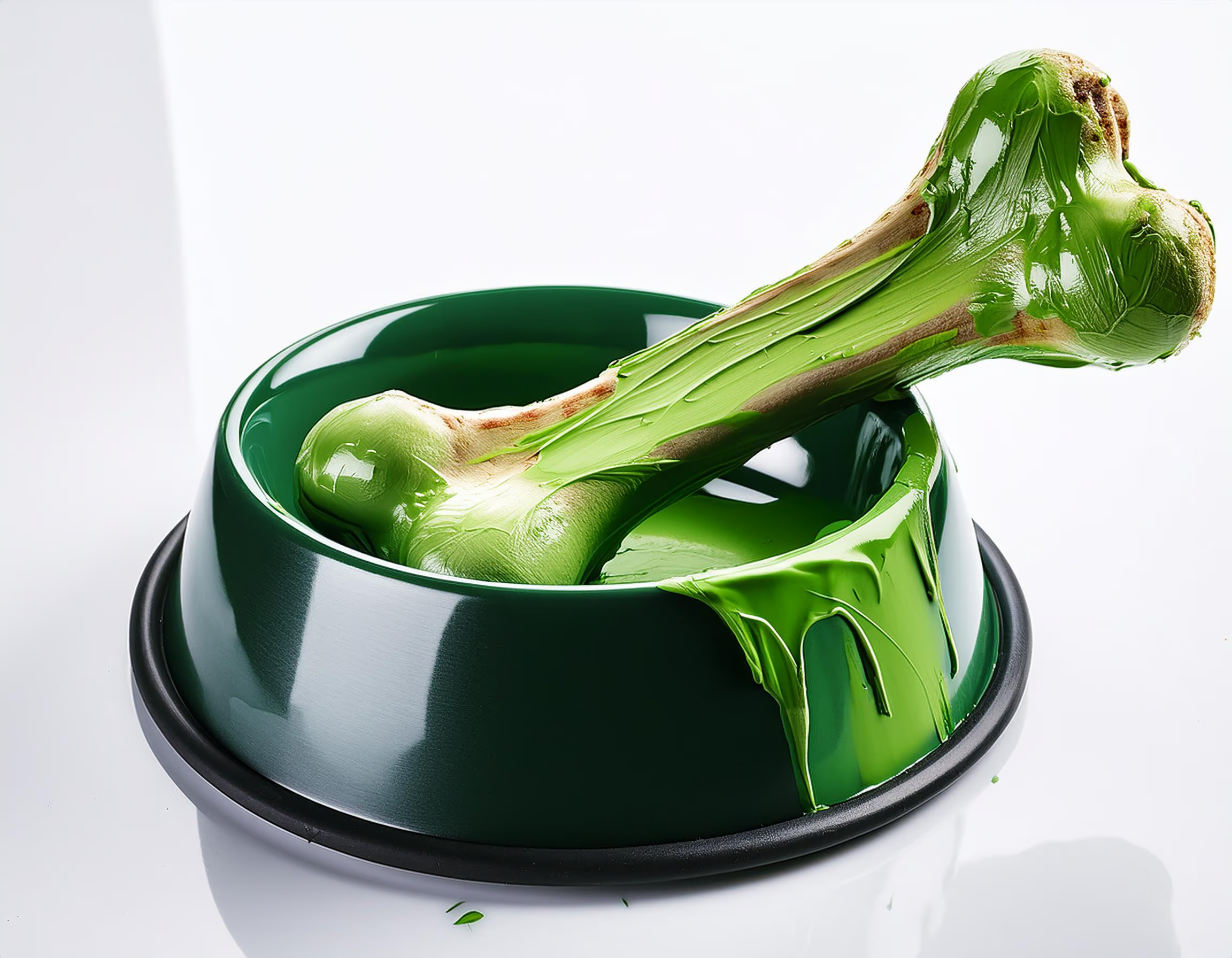 Trends
Trends
4+ MIN
21/10/2024
Por María Candelaria Carbajo
Greenwashing in pet food: what it is and how to avoid it
Consumer demand and the evolution of legislation about environmental impact, waste, and pollution have meant that the pet industry is adopting and seeking more and more sustainable packaging alternatives and production processes. In recent years, reducing, reusing, and recycling has become a priority for both pet owners and those companies in charge of meeting their needs. We already know that the main function of packaging, in addition to making it possible to divide and transport products, is to protect the useful life and conditions of the food or various products it contains, and that is why, as we cannot do without its use, we must seek and adopt the best materials and processes to try to take care of the negative impact on the ecosystem and society that our choices produce. What are we talking about when we talk about greenwashing? The English concept of greenwashing combines two words: green and washing, referring to what means a 'greenwashing' of a company reputation, in which unsustainable actions are hidden or disguised, intentionally or not (or not as sustainable as proclaimed) under the motto of sustainability and ecologically responsible actions to clean, improve or change its positioning. In 2023, the analysis company Kantar published the Sustainability Sector Index 2023, a global study about consumer sustainability concerns and behaviors, where it states that more than half of respondents believe that brands, regardless of their industry, are misleading and unclear when reporting on their sustainability actions. Greenwashing can generate false impressions or provide misleading information about the benefits and environmental care of a product, service, or company through exaggerating actions related to environmental care, using ambiguous language, or emphasizing achievements while ignoring negative impacts, for example. Of course, social media is one of the places where greenwashing is most common. Fake news volume or reproduction of information from third parties that travel through digital platforms makes it very difficult for messages not to be distorted, not to mention that, unfortunately, some people or companies use them to influence in a minor way. Tips to communicate honestly and avoid greenwashing As producers, pet food manufacturers, or distributors, it is natural that we want to attract consumers to our products, and that is why it is essential to know our processes very well and how to avoid communicating them and falling into greenwashing. Here, we share some tips: Knowing the product and its components very well: Production companies must ensure their design and marketing teams know well what processes, changes or transformations must be communicated about environmental, social, and health care to communicate the impact (both positive and negative) of their decisions and movements. To avoid greenwashing, it is essential to communicate information with precise and clear statements, understandable to all potential consumers, based on verifiable and updated evidence, that contemplate and tell the complete story of the product. Being transparent: with the conditions or warnings, if any, about uses or claims of the products or their components. Not exaggerating: the environmental impact, or declaring anything false, explicitly or implicitly. Clearing durability and disposability: This kind of information and procedures should be clarified and labeled if applicable. For example, some companies claim that their products are biodegradable, but they are partially misleading their consumers because they do not decompose within a reasonable period. Giving access to more information: through QR codes, direct links to website sections, and the like. Keeping your word: One of the keys to avoiding greenwashing is just doing what you say, not only to avoid falling into these unethical practices but also to avoid losing trust and creating a gap between actions and goals. Informing, even if there is little to communicate: The absence of communication is not the best for a brand. Different surveys show that more than half of the consumers surveyed consider it very difficult to know which products are good or bad from an ethical or environmental point of view, due to a lack of information. If they do not clearly understand how a company or product contributes to ecological and social care, we are not helping them make information-based decisions. Being careful with empty messages: Saying a lot while saying nothing is a wrong strategy. The worst thing that can happen to us as a company is not being reliable, because consumers will lose trust in the brand, judging it as dishonest. Conclusion Nowadays, trust in brands is mainly based on three principles: integrity, identification, and inclusion. When consumers buy products with claims that later turn out to be false, they become disillusioned and lose trust not only in that specific brand but in the entire industry as well. That is why it is so important to take care of the ethics and image of the market all together. And although regulation grows every day throughout the world, we must still encourage and appeal to workers' ethics and morals, because, in most countries, there are still no specific regulations or penalties for these practices when misused. Source: All Pet Food Magazine
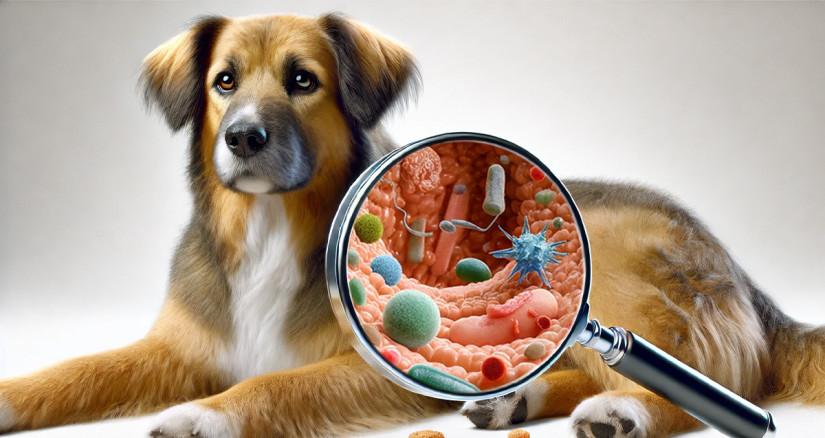 Sanity
Sanity
4+ MIN
18/10/2024
Prebiotics in Pet Food
Why are they important? The microorganisms that call the GI tract home require nutrients to survive and proliferate. They produce enzymes that break down nutrients inside the body that our pets lack, and thrive on undigested material, such as prebiotic fiber, that passes through the GI tract relatively unchanged. Ensuring these organisms have access to appropriate nutrients is paramount for a healthy and diverse bacterial population in the gut. This can help to prevent pathogenic bacteria from proliferating, which can reduce the incidence of GI upset, diarrhea, and overall dysbiosis. Not all fiber is created equal While bacteria can break down nutrients that animals cannot, there are still limitations to what they can utilize. Fiber is a carbohydrate consisting of sugars bound together, and their orientation determines which enzymes can digest them. Soluble fiber, which attracts water and forms a gel during digestion, forms most of the fermentable fibers in the digestive tract. This kind of fiber is generally what is used as prebiotics, and they include compounds such as inulin, fructo-oligosaccharides, beta-glucans, and others. Insoluble fiber on the other hand, is insoluble in water and does not form a gel during digestion. In general, these are minimally fermented in the large intestine, and thus, are not commonly used as a prebiotic. However, they do add bulk to the stool and are important for promoting regularity and maintaining stool quality. Common sources of insoluble fiber include cellulose and hemicellulose. When formulating a diet with prebiotics, it is important to ensure the ingredient accomplishes the goals of the formulation. Ultimately, the prebiotic must support the microorganisms in the large intestine to be effective. While prebiotics come in many forms, two common prebiotics used in pet food are inulin and fructo-oligosaccharides (FOS). Inulin Inulin is a long-chain fructo-oligosaccharide that is common prebiotic fiber in pet foods and is commonly derived from chicory root. Inulin is well known to modify the composition of the gut microbiome and metabolic activity in a variety of animals.1 It has been relatively well studied in dogs,2-6 where it has been shown to increase the prevalence of beneficial bacteria, modify the fecal short chain fatty acid profile, and support better overall GI health. Similar results have been demonstrated in cats,7,8 though the inclusion rates are different from that of dogs. Fructo-oligosaccharides Fructo-oligosaccharides are similar to inulin in that they are chains of fructose, though they are generally smaller in length. Similar to inulin, FOS have been shown to improve the gut microbiome and fecal characteristics of dogs, 9,10 and cats.11-13 Therefore, FOS could be a good alternative to inulin in pet diets. Conclusions Prebiotics can be an effective way to supplement a pet's diet to improve gut health. It is important that the prebiotic inclusion rate is appropriate to ensure that the pet receives enough of it to impart a beneficial effect on their GI health, but not too much to result in loose stool. If you are interested in creating a product that utilizes prebiotic fiber, contact BSM Nutrition Services. We utilize scientific data from a variety of published research articles to ensure your product is efficacious and competitive in the marketplace. Source: BSM Partners References Flickinger, EA, Fahey GC. 2002. Pet food and feed applications of inulin, oligofructose and other oligosaccharides. Brit. J. Nutr. 87(S2):S297-S300. Propst, EL, Flickinger, E, Bauer, L, Merchen, N, Fahey, GC. 2003. A dose-response experiment evaluating the effects of oligofructose and inulin on nutrient digestibility, stool quality, and fecal protein catabolites in healthy adult dogs. J. Anim. Sci. 81(12):3057-3066. Alexander, C, Cross, TWL, Devendran, S, Neumer, F, Theis, S, Ridlon, JM, Suchodolski, JS, de Godoy, MR, Swanson, KS. 2018. Effects of prebiotic inulin-type fructans on blood metabolite and hormone concentrations and faecal microbiota and metabolites in overweight dogs. Brit. J. Nutr. 120(6):711-720. Beloshapka, AN, Duclos, LM, Boler, BMV, Swanson, KS. 2012. Effects of inulin or yeast cell-wall extract on nutrient digestibility, fecal fermentative end-product concentrations, and blood metabolite concentrations in adult dogs fed raw meat–based diets. Am. J. Vet. Res. 73(7):1016-1023. Russell, TJ. 1998. Effect of natural source of non-digestible oligosaccarides on the fecal microflora of the dog and effects on digestion. Beloshapka, AN, Dowd, SE, Suchodolski, JS, Steiner, JM, Duclos, L, Swanson, KS. 2013. Fecal microbial communities of healthy adult dogs fed raw meat-based diets with or without inulin or yeast cell wall extracts as assessed by 454 pyrosequencing. FEMS Microbiol. Ecol. 84(3):532-541. Hesta, M, Janssens, G, Debraekeleer, J, De Wilde, R. 2001. The effect of oligofructose and inulin on faecal characteristics and nutrient digestibility in healthy cats. J. Anim. Physiol. Anim. Nutr. 85(5‐6):135-141. Butowski, CF, Thomas, DG, Young, W, Cave, NJ, McKenzie, CM, Rosendale, DI, Bermingham, EN. 2019. Addition of plant dietary fibre to a raw red meat high protein, high fat diet, alters the faecal bacteriome and organic acid profiles of the domestic cat (Felis catus). PloS One. 14(5):e0216072. Félix, AP, Brito, CM, Zanatta, CP, Lima, DC, Oliveira, SG, Maiorka, A. 2013. Supplementation of fructooligosaccharides (FOS) on faecal characteristics of adult dogs. Archiv. Vet. Sci. 18(1):9-14. Pinna, C, Vecchiato, CG, Bolduan, C, Grandi, M, Stefanelli, C, Windisch, W, Zaghini, G, Biagi, G. 2018. Influence of dietary protein and fructooligosaccharides on fecal fermentative end-products, fecal bacterial populations and apparent total tract digestibility in dogs. BMC Vet. Res. 14:1-10. Sparkes, AH, Papasouliotis, K, Sunvold, G, Werrett, G, Gruffydd-Jones, EA, Egan, K, Gruffydd-Jones, TJ, Reinhart, G. 1998. Effect of dietary supplementation with fructo-oligosaccharides on fecal flora of healthy cats. Am. J. Vet. Res. 59(4):436-440. Barry, KA, Wojcicki, BJ, Middelbos, IS, Vester, BM, Swanson, KS, Fahey, GC. 2010. Dietary cellulose, fructooligosaccharides, and pectin modify fecal protein catabolites and microbial populations in adult cats. J. Anim. Sci. 88(9): 2978-2987. Barry, KA, Hernot, DC, Van Loo, J, Fahey, GC, de Godoy, MRC. 2014. Fructan supplementation of senior cats affects stool metabolite concentrations and fecal microbiota concentrations, but not nitrogen partitioning in excreta. J. Anim. Sci. 92(11):4964-4971.
 Sanity
Sanity
2+ MIN
16/10/2024
US: majority of pet owners still underestimate pet obesity
The latest data from market research firm Bloomberg Intelligence's (BI) Global Pet Economy 2024 report shows that dog obesity climbed to 59% in 2022, up from 43% in 2007. Similarly, 61% of cats were classified as obese in 2022. BI also reports that a pet being overweight contributes to heightened risks of cancer, diabetes and heart disease. Further supporting this trend, findings from the American Pet Products Association's (APPA) 2024 Cat & Dog Report reveal an increase in vet-diagnosed cat obesity, from 11% in 2018 to 17% in 2024. Weight loss prescription diets increased from 8% to 13% over the same period. For dogs, obesity diagnoses rose from 8% in 2018 to 12% in 2024, while weight loss prescription diets increased from 8% to 11%. Pet parents' attitudes A survey conducted by Ollie, an American dog food firm, found that despite around 60% of dogs in the US being overweight or obese, three-fifths of surveyed pet owners believed their pets were at an ideal weight. Over half of the respondents (53%) acknowledged that obesity has a 'significant' impact on their pets' health, while 35% believed it had 'some' effect. The research also revealed a significant knowledge gap, as only a small percentage of pet owners recognized key indicators of a healthy weight in dogs. Just 30% knew that easily feeling their dogs' ribs by touch was a sign, while even fewer were aware that the same applies to the spine (20%) and hip bones (17%). Among different generations, Gen Z (born between 1997 and 2012) and millennials (born between 1981 and 1996) were most concerned about comments about their dogs' weight, with 47% and 46%, respectively, expressing worry. These findings align with a 2023 study by the Association for Pet Obesity Prevention (APOP), which found that 84% of dog owners and 70% of cat owners assessed their pets' body condition as healthy despite many being classified as overweight by veterinarians. Older surveys from APOP show that this awareness gap has persisted over time. Source: GlobalPETS
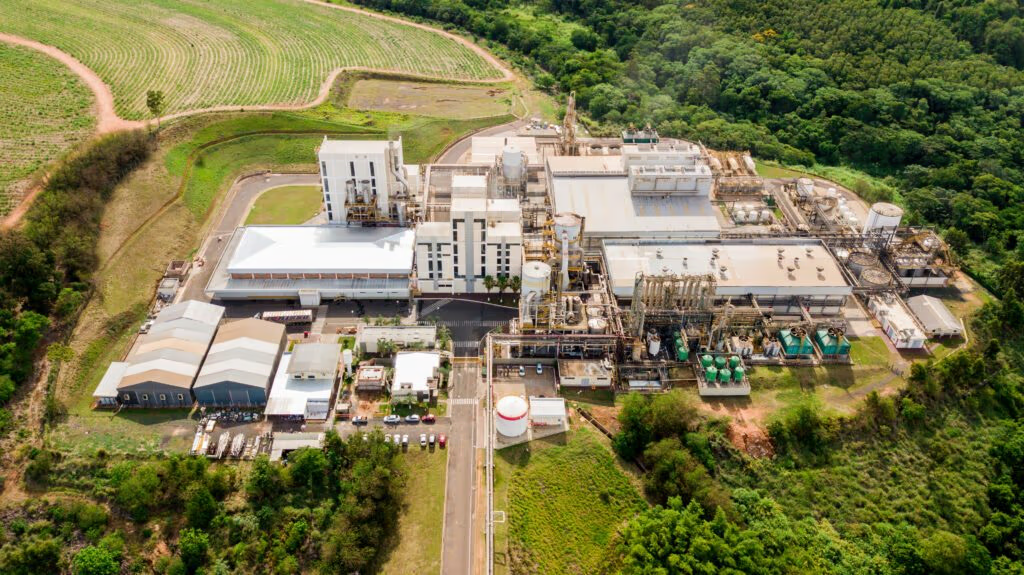 Market Information
Market Information
4+ MIN
09/10/2024
Lesaffre acquires majority stake in Biorigin to strengthen and broaden its savory ingredients offering
As a result of the deal, Lesaffre will become the controlling shareholder of Biorigin with 70% of its total corporate capital, while Zilor will remain a shareholder with 30%. The deal includes Biorigin's production unit in Quatá/São Paulo, an industrial plant, based in the attractive country of Brazil where there is abundant sugar, water and renewable energy resources.
The aim of this deal is to leverage Lesaffre's and Biorigin's complementary capabilities to enable enhanced yeast derivative and savory ingredient solutions for customers worldwide. The business combination between Lesaffre and Biorigin will offer customers benefits by upgrading production capacity and new solutions based on the production and marketing of naturally derived ingredients for human food and animal nutrition industries.
For Brice-Audren Riché, CEO of Lesaffre, "This acquisition of a majority stake in Biorigin represents an exciting new chapter for Lesaffre. It will offer development opportunities to meet the growing needs of the human food and nutrition industries, as society currently demands savory ingredients from natural sources. We are stepping up to a new dimension thanks to this strategic move to reinforce Lesaffre and its Business Unit Biospringer by Lesaffre as global players in the field of yeast extracts for the savory ingredients market. Importantly, we are doing this with a key strategic partner, Zilor, who shares similar values to Lesaffre and a strong focus on Corporate Social Responsibility. Committed to deliver responsible taste through Biospringer, and together with Biorigin, we are well-positioned to deliver enhanced yeast derivative and savory ingredient solutions to customers around the world."
For Fabiano Zillo, CEO of Zilor, 'Biorigin's 20-year history has been marked by innovation and commitment to sustainability. Throughout this time, Biorigin has built solid, long-term business partnerships, with great respect for its customers and other stakeholders. We believe this partnership will be a great opportunity to contribute to sustainable development and enhance the supply of yeast derivatives to the human food and animal nutrition markets. This deal will allow Biorigin to incorporate greater expertise, market insight and access to advanced R&D capabilities from Lesaffre and will allow Biorigin's parent company, Zilor, to join forces with a highly capable and experienced strategic partner."
Biorigin's brand will be kept for producing, marketing and selling the products.
The units in Lençóis Paulista (SP) and Macatuba (SP), and the products made from alcoholic fermentation yeast and brewer's yeast, manufactured at those locations will continue to be handled and sold by Zilor.
The deal is subject to the fulfillment of the usual preconditions for such transactions, including the approval from creditors and other legal and regulatory approvals, including the Administrative Council for Economic Defense (CADE), and it is expected to be concluded over the next few months.
Until then, Biorigin and Lesaffre shall remain totally independent, keeping their businesses as usual.
ABOUT LESAFFRE
Lesaffre is a key global player in fermentation for more than a century. Established on all continents through 80 production sites in 50 countries, it counts 11,000 employees and more than 96 nationalities. On the strength of this experience and diversity, Lesaffre works with customers, partners and researchers to find ever more relevant answers to the needs of food, health, naturalness and respect for our environment. Thus, every day, Lesaffre explores and reveals the infinite potential of microorganisms.
To nourish 9 billion people, in a healthy way, in 2050 by making the most of our planet's resources is a major and unprecedented issue. We believe that fermentation is one of the most promising answers to this challenge.
Lesaffre – Working together to better nourish and protect the planet
ABOUT ZILOR
Zilor, a Brazilian multinational with 78 years of experience, is one of the leading companies in the sugar-energy sector and diversifies its portfolio into two divisions: agroindustry, focused on the cultivation and processing of sugarcane for the production of sugar, ethanol, and clean, renewable electric energy; and natural ingredients, operating through the Biorigin unit, which specializes in biotechnological processes for the production of ingredients for the food, pet food, and animal nutrition and health industries.
The agroindustry division has three production units in Brazil, located in the countryside of São Paulo state, in the cities of Lençóis Paulista, Macatuba, and Quatá; the Biorigin division also currently operates three production units in Brazil, located in the same cities. Additionally, Biorigin has three Distribution Centers, one in Brazil and two abroad, located in the United States and Belgium, enabling the distribution of natural origin ingredients to over 60 countries, marking its presence on all continents.
Zilor - Build wealth and promote the well-being of society, through the transformation of innovative and natural agricultural resources into food and energy.
Source: Lesaffre
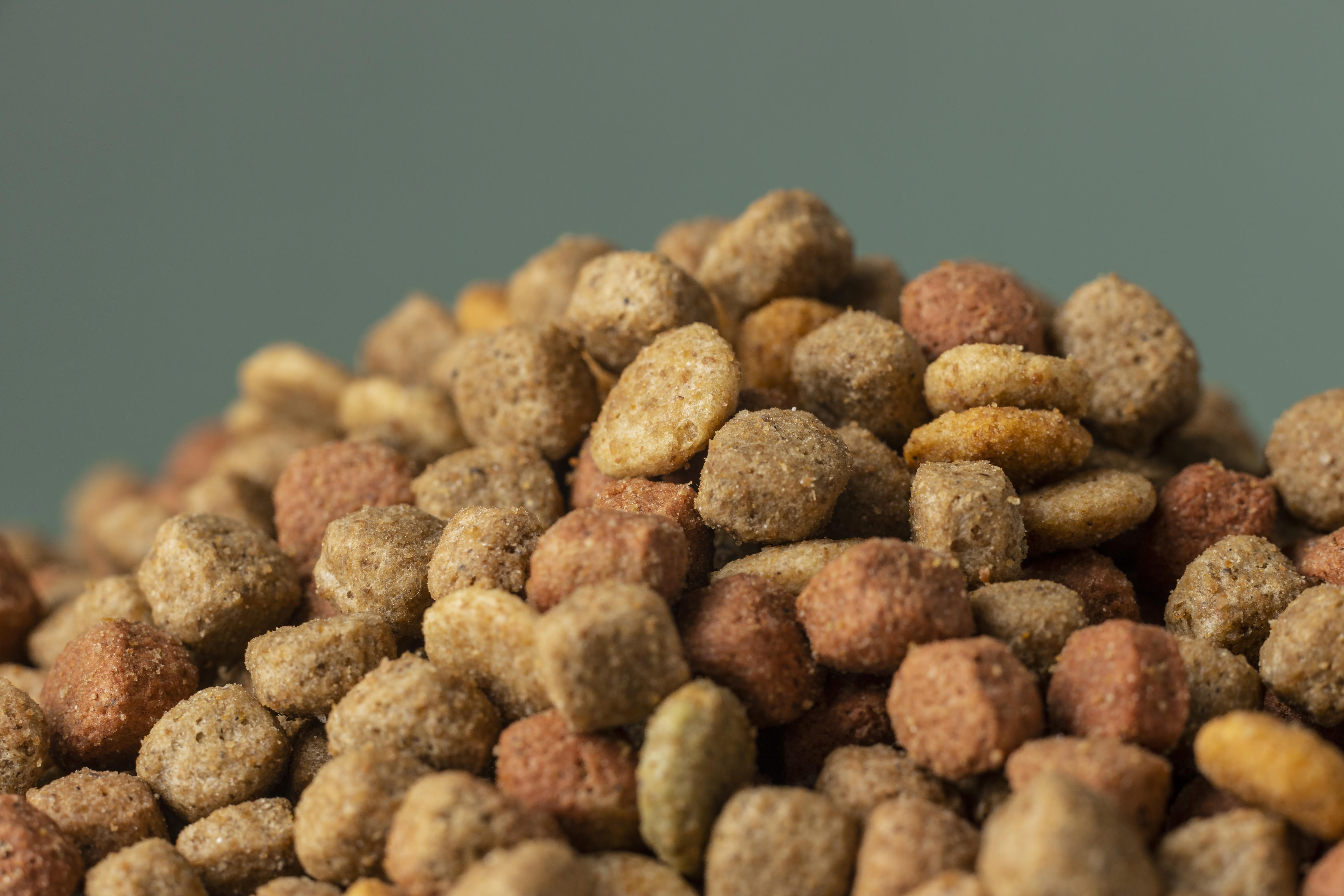 Other microingredients
Other microingredients
3+ MIN
08/10/2024
Por Erika Stasieniuk
Vegetable biocholine: An alternative to use choline chloride in pet food
Choline, also known as vitamin B4, is found in all ingredients used in the formulation of dog and cat foods, with greater availability in animal products, mainly in poultry by-product flour. The classification of choline as a B-complex vitamin is controversial, as it does not behave as a coenzyme in metabolism and is required in higher amounts than other B-complex vitamins (Bertechini, 2013). Reis et al. (2012) highlight that, unlike other B-group vitamins, choline can be synthesized in animal livers because of serine amino acid in the presence of folic acid and vitamin B6. Due to its organic function, choline does not strictly fit the definition of a vitamin and could be considered an essential amino acid (Bertechini, 2013). Nutritional recommendations of choline in dogs range from 1,640 to 1,890 g/1,000 g of dry matter. In cats, vary from 2,400 to 3,200 g/1,000 g of dry matter, depending on the animal life stage and energy maintenance needs according to FEDIAF (2021). These recommendations are partially fulfilled with ingredients used in animal formulation. However, depending on the amount of animal ingredients, it can be necessary to supplement it with choline chloride. This compound salt is produced by chemical synthesis and is widely used in the pet food industry. According to Leeson and Summers (2001), Combs Jr. (2008), and Ruts (2008), the powder form of choline chloride is extremely hygroscopic and can hasten the deterioration of other vitamins upon contact. On the other hand, the liquid form is highly corrosive and requires specialized equipment for handling and storage (Mcdowell, 2000). These characteristics make the handling of choline chloride in the feed mill or premix challenging, which can compromise the premixing with other microingredients and result in the loss of vitamins (Mallo and Paolella, 2017). Naturally, choline is found in foods as phosphatidylcholine. This substance is made of esterified fatty acids and the choline itself. In agreement with Leeson & Summers (2001), Combs Jr. (2008), and Rutz (2008), less than 10% of choline in food is in free form or as sphingomyelin, which are analogs of phosphatidylcholine containing sphingosine instead of fatty acids. In plants, it is found in phosphatidylcholine, free choline, and sphingomyelin forms. Nowadays, there are natural products that come from plants with a high content of choline in esterified form providing a high bioavailability, which can be an important alternative to the use of synthetic choline chloride. One of these alternatives to the choline, called vegetable biocholine, is derived from vegetable extracts of the following plants: Trachyspermum ammi, Citrullus colocynthis, Achyranthes aspera, Azadirachta indica, Acacia nilotica, Silybum marianum, Andrographis paniculata, and Ocimum sanctum. It is worth mentioning that the composition of commercial vegetable biocholines available on the market may vary among suppliers. The lower hygroscopicity of vegetable biocholine is positive as it reduces water-soluble vitamins in premixes compared to choline chloride. This is due to the reduced free water content in the mixture, resulting in a lower potential reactive. Moreover, excess water can cause operating problems in dog and cat feed mills. Although there is limited research on pets, vegetable biocholine has been successfully used in broiled chicken and laying hens, demonstrating positive results in feed conversion, manufacturing, and egg weight (Chen, 2007; Calderano, 2015). Three diets were evaluated in 40 Beagle dogs in a study conducted by Mallo and Paolella (2017): the first includes an herbal source of choline, the second with choline chloride, and the third as a negative control diet. Results demonstrated no significant differences in dog's preference for diets in quality and quantity of feces, or blood protein profile. However, compared to negative control diets, a reduction of triglyceride levels and HDL was observed in choline-supplemented diets. Mendoza-Martinez et al. (2022) conducted a study with the following treatments: non-supplemented diets (377 mg choline/kg), choline chloride (3,850 mg/kg equal to 2,000 mg choline/kg diet), and vegetable biocholine (200, 400, and 800 mg/kg) for 60 days. Both sources of choline indicated similar responses, but vegetable biocholine demonstrated additional properties, such as prevention of cardiovascular and metabolic diseases, cancer prevention, and inflammatory and immune response. Moreover, it affects the behavior and cognitive processes of dogs. Nascimiento et al. (2022) concluded that vegetable biocholine could replace choline chloride in canine nutrition, as it does not damage lipid metabolism and other functions of the organism. On the contrary, there was an improvement in other functions, especially due to the significant reduction of liver enzymes, total cholesterol, and triglyceride. By Erika Stasieniuk and Ludmila Barbi Source: All Pet Food Magazine
 Market Information
Market Information
3+ MIN
04/10/2024
The first conversational AI for the veterinarian sector arrives in the UK
AITEM S.r.l., spin-off company of Dumarey Automotive Italy Spa and specialized in generative AI, announces the launch of LAIKA, the first artificial intelligence platform developed specifically for supporting veterinarians in clinic management and daily decision-making processes. Already active in the Italian and French markets, LAIKA now makes its entry into the United Kingdom. Moreover, thanks to AITEM's admission into the vHive Animal Health Incubator, a strategic alliance between Zoetis and the University of Surrey, partnered with SETsquared, LAIKA will be able to count on the support of industry experts and ensure a presence in the UK.
«LAIKA is characterized for being the expert conversational agent verticalized for the veterinary industry, based on a combination of AI language models known as Large Language Models (LLM) in order to obtain immediate answers to clinical questions posed by veterinarians, in outpatient and emergency room settings». Davide Tricarico, CTO of AITEM, explains. Developed to optimize time management and enhance the resources and skills of individual veterinarians, LAIKA is the result of a collaboration between experienced AI engineers and veterinary professionals: in fact, it is a patented system, continuously updated and already tested by more than 100 medical directors.
During this era in which artificial intelligence is changing in a significant way working methods, representing an increasingly relevant element in various fields, including veterinary medicine, LAIKA aims to support in simplifying daily activities, especially in high-pressure settings such as hospitals, where speed and accuracy are crucial. LAIKA is able to provide real-time consultative suggestions, such as anamnesis, the choice of therapies, the definition of diagnostic procedures, the analysis of test results and causes, and the formulation of differential diagnoses. By supporting veterinarians in the analysis of clinical data, it allows them to focus on defining targeted treatment plans, providing valuable support in clinical related decision, acting as a complementary tool and not a substitute of a professional judgment.
«Every day, veterinarians around the world are dedicated with the utmost effort to taking care of animals. They face complex decisions, bearing the responsibility of patients' lives on their shoulders, and often live with the pain of not being able to save each of them.» - explains Massimiliano Melis, COO of AITEM. «Between 1979 and 2015, according to data from the U.S. CDC National Center for Health Statistics published in 2019, close to 400 veterinarians died by suicide and almost 60% experienced work-related stress, anxiety or depression so severe that they required professional help. That's why we created LAIKA: a knowledgeable AI colleague that helps them make the hardest decisions, manage their workload, and ensure that every patient receives the best possible care. Basically, an ally who takes care of them while they take care of others.» This is the concept of LAIKA.
LAIKA will be showcased at booth S3 – S15 S58 at the London VET Show on 14 and 15 November 2025, where it will be possible to interact with LAIKA and get a preview of the new technology being developed.
About us
LAIKA was born in 2022 with the aim of supporting veterinarians in taking care of their patients, simplifying their work, and thus reducing the extremely high burnout levels in the sector. An ambitious project, which was born thanks to the close collaboration between expert engineers in artificial intelligence and the best specialists in the veterinary field.
LAIKA is developed by AITEM SRL, specialised in generative AI and a spin-off from Dumarey Automotive Italia Spa, part of the Dumarey group, known for creating technologically advanced systems. Thanks to this union of competencies, we have created the veterinary colleague who can provide more insights and a deeper perspective on various topics for the well-being of dogs and cats.
Source: LAIKA
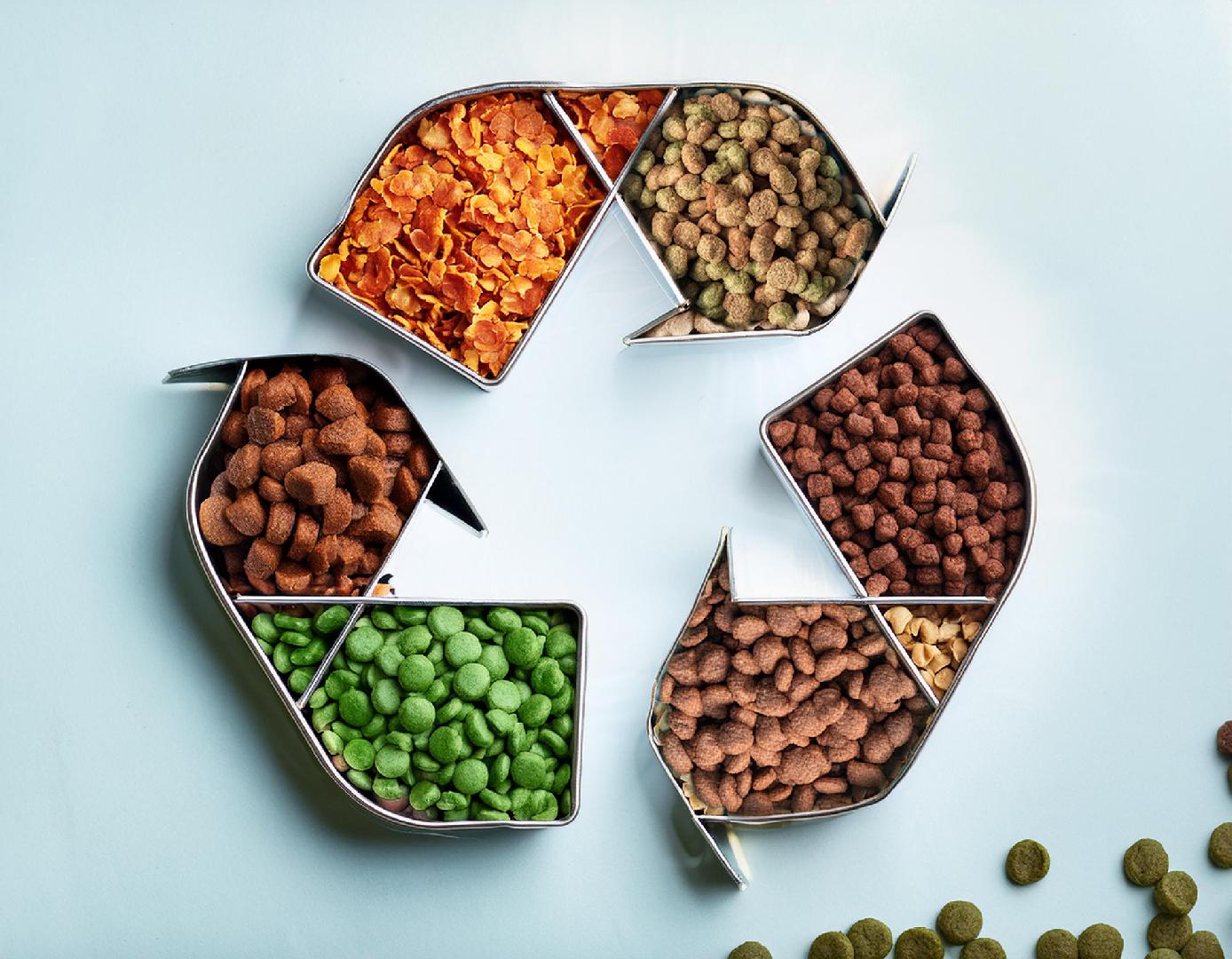 Trends
Trends
3+ MIN
02/10/2024
Reducing, recycling and reusing in the pet food market
I will share some ideas about how to carry out these principles: Reducing food waste As with human feed, it is important to reduce the pet food waste. This means to reduce the necessary amount of food for your pet and to avoid the excess of food that can be thrown away. Recently, I found an interesting article about how some ideas contribute to reducing waste. The Al-powered dog food vending machine company from Finland release an innovative technology: a dog food vending machine. It resembles a doghouse, and it is designed as a pilot project for Hau-Hau Champion quest, owned by VAFO Group, to reduce dog food waste. Regularly, there are multiple reasons to buy a pet food bag. If the purchase food does not please your dog, it often means that nearly a full bag of pet food is thrown away. The working mechanism of the vending machine is based on an artificial intelligence (AI) video recognition software. The machine identifies the approaching dog and drops kibbles into the bowl, so the 'client' tastes the product. Once the machine sees the leaving dog, it automatically disinfects the bowl using UV light and is ready to serve its next 'client'. As one of their executives says, in this way dogs have the chance to taste the food before, which helps to reduce pet food waste in the future. For some pet parents, preparing homemade diets with fresh and natural ingredients can reduce reliance on processed and packaged foods and packaging control waste. Additionally, you control food quality and reduce waste. Regarding pet food manufacturing, 'reduce' means to take precautionary measures. One way to reduce waste during pet food production is to optimize the processes to minimize the waste, including the efficient use of ingredients, the optimization of recipes to reduce unused byproducts, and the efficient management of the supply chain to minimize excess inventory. Choosing sustainable and local ingredients ethically produced in pet food production is essential to reduce the industry's environmental impact. It is also important to adopt sustainable fishing and agriculture practices for some ingredients, such as fish and cereals. Setting up an effective wasting management, such as composting organic waste and recycling packing materials, helps to reduce the environmental impact of the pet food production and promotes sustainability in the supply chain. Recycling containers and packing materials Pet food manufacturers adopted sustainable packing practices, for example, using recycled, biodegradable, or compostable materials to minimize their impact on the environment; most of them are in containers that can be recycled. One must be sure of fulfilling the recycling requirements of their city properly. In addition, many companies are using more sustainable packaging, such as recyclable or biodegradable ones, which may also be an option to consider. Circular solutions are fundamental. Nowadays, consumers have a great interest in recycling, even in the recycled content, as 50% of consumers aged 44 years inform to have bought a product according to the packaging content. In terms of production, the pet food industry contributes to the recycling of ingredients and byproducts. In pet food production, many byproducts for human consumption can be recycled and used as ingredients. For example, meat byproducts and vegetables that do not fulfill quality requirements for human consumption can be processed and used in pet food production, reducing waste. Reusing safe food waste You can use food waste if it is safe for your pet health. For example, chicken or lean meat can be added to your dog's diet, if they are free of damaging seasoning or ingredients. To do that, it is important to investigate which foods are safe and which are toxic. According to the industry, the reuse of pet production resources implies the efficient use of energy, water, and natural resources. This includes technology applications and procedures that minimize energy and water consumption in the production facilities, as well as the use of renewable energy and conservation practices. To summarize, the application of the three Rs principle (reduce, recycle, and reuse) in pet food production means taking measures to reduce waste, recycle and reuse resources, and adopt sustainable procedures in each part of the production process. This not only benefits the environment, but also promotes health and well-being to pets and their owners. By: MVZ. Armando Enríquez de la Fuente Blanquet Source: All Pet Food Magazine
3+ MIN
02/10/2024
The company formerly known as Schenck Process FPM has officially transitioned its name to Coperion
The integrated Coperion companies combine the strengths of multiple process industry leaders under a single brand, offering manufacturers a broader portfolio of solutions, technologies and services across the food, health and nutrition markets, such as baking, confectionery, pet food, pharmaceuticals and cosmetics, as well as the polymers/performance materials industries such as plastics, plastics recycling, chemical, battery and minerals.
Coperion brings flagship brands together under one roof, including those that were formally from Schenck Process (FPM) – Raymond Bartlett Snow, Stock, Baker Perkins, Kemutec, and Mucon. This allows Coperion to offer solutions to customers in a more streamlined way—with an even deeper team of process experts and collaborative problem-solvers. Customers will continue to receive hands-on service and support, including access to test and innovation centers around the world.
'Our dedicated employees are energized by the possibilities of the new Coperion and the positive impact we believe its expansion is already having on our company and our customers,' said Matthew Craig, General Manager, FPM. 'Bringing all technologies under the Coperion name signals a deeper integration that means we are better equipped than ever to deliver the high-quality solutions, technologies and service we've always been known for.'
'We made the strategic decision to strengthen Coperion's capabilities,' said Ulrich Bartel, President, Coperion. 'We have done so by bringing together people and technologies that customers know and trust, creating a broader and deeper portfolio that meets every process step and cements our over 140-year legacy of proven performance and leadership.'
The migration of the former Schenck Process FPM began in May 2023 when it spun off from the German-based Schenck Process Group—which has since rebranded as Qlar in a parallel, but unrelated, process. Along with the name change, the website has moved to coperion.com/fpm. All emails, including those for employees from the technology brands of Baker Perkins and Kemutec have changed to @coperion.com.
About Coperion
Coperion (www.coperion.com) is a global industry and technology leader in compounding and extrusion systems, sorting, size reduction and washing systems, feeding systems, bulk material handling and services. Coperion develops, produces, and services plants, machinery, and components for the plastics and plastics recycling industry as well as the chemical, batteries, food, pharmaceutical and minerals industries. Coperion employs more than 5,000 people in its three divisions, Polymer, Food, Health & Nutrition, and Aftermarket Sales & Service, and in its over 50 sales and service companies worldwide. Coperion is an Operating Company of Hillenbrand (NYSE: HI), a global industrial company that provides highly-engineered, mission-critical processing equipment and solutions to customers serving a wide variety of industries around the world. To learn more, visit www.Hillenbrand.com.
About Schenck Process FPM
Schenck Process Food and Performance Materials (FPM) – a brand of Coperion which is part of Hillenbrand Inc., engineers cutting-edge technologies and solutions across the bulk material handling spectrum. Our teams deliver complete solutions for your real-world needs, based on deep process and engineering expertise. We specialize in precision solutions for pneumatic conveying, milling, dust collection, sifting, weighing, and feeding. Schenck Process FPM and Coperion boast a streamlined business model which enables us to deliver high-performing systems for customers in every corner of the world, supported by an extensive collection of services. coperion.com/fpm
Source: Coperion
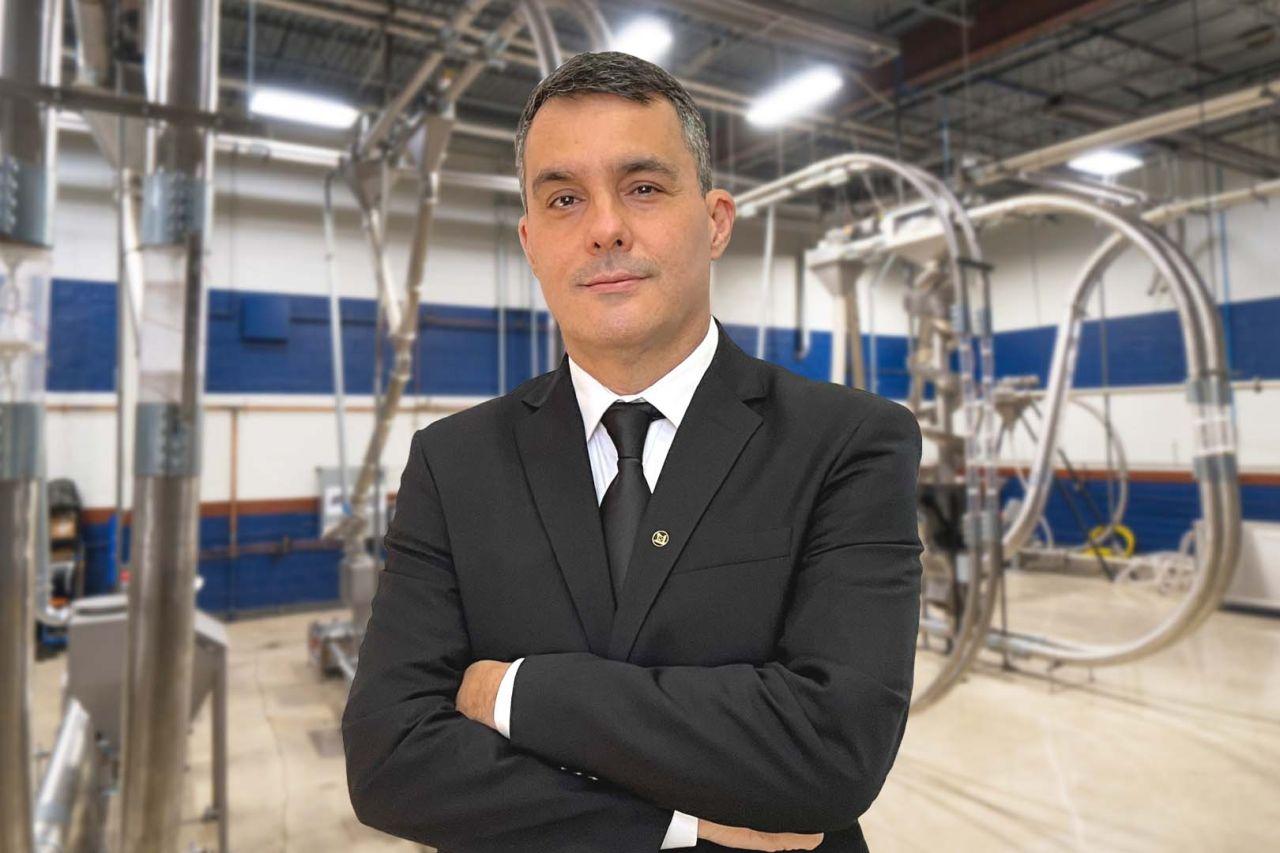 Market Information
Market Information
2+ MIN
01/10/2024
MPE-Chain-Vey Appoints Fernando Oliveira as Director of Latin American Sales
'As we continue to introduce groundbreaking products like Chain-vey's conveyor systems, it is vital that we enhance our presence in the Latin American market,' said Dan Ephraim, President of MPE 'Fernando's extensive expertise in managing client relationships and leading high-performing teams in dynamic markets makes him an invaluable addition to our team as we continue to grow in the region.' Fernando brings over 35 years of experience in the food processing and packaging industries, with a distinguished career marked by leading successful teams and achieving exceptional customer satisfaction across Latin America, Europe, and Asia. Before joining our team, Fernando held several leadership roles in food equipment companies. Fernando holds a B.B.A in Business Administration, a B.A.S.c in Marketing, and an MBA from FGV in Brazil. He is fluent in Portuguese, English, Spanish, French, and Indonesian. 'I am thrilled to join an industry leader like MPE Modern Process Equipment – Chain-vey, renowned for its innovative and reliable solutions,' said Fernando. 'I look forward to contributing my deep understanding of the Latin American market to further strengthen our customer relationships and help businesses enhance their operational efficiency with our industry-leading solutions.' About Chain-Vey Chain-Vey is the global leader in the design and production of advanced conveying and processing solutions. Known for its highly adaptable and reliable conveyor systems, Chain-vey serves a variety of industries, including food processing, by enhancing productivity, improving quality, and reducing operational costs. Our global presence and commitment to excellence make us a trusted partner for businesses seeking to optimize their operations. For more information, please visit www.mpechicago.com/chain-vey/. About MPE Modern Process Equipment Founded in 1957 and headquartered in Chicago, USA, MPE is a family-owned business with a longstanding reputation for innovation and excellence. MPE is dedicated to leading the industry in the invention, development, and manufacturing of advanced processing equipment, including grinders, conveyors, and comprehensive system solutions. We translate our expertise into value for our customers through professional solutions and exceptional service. Source: MPE - Chain-vey
 Market Information
Market Information
2+ MIN
26/09/2024
Canada took largest share of $2.4 billion in US pet food exports in 2023
A new report from the American Feed Industry Association (AFIA) concludes that pet food exports were worth $2.4 billion (€2.1B) in 2023. They make the second largest commodity by value among US animal food exports after corn co-products, which was worth $4 billion (€3.6B). The total value of all US animal food exports, including pet food, was $13.4 billion (€11.9B) in 2023. This is a 79% year-on-year (YoY) increase, while total export volumes were 19.8 million metric tons, depicting a 120% annual increase. Sales and tax contributions AFIA estimates that in 2023, around 5,650 US animal food manufacturers, including pet food manufacturers, generated $267.1 billion (€239B) in total sales. As per the association, dog and cat food led the animal food export categories by value, witnessing a 20% YoY increase. Last year, the industry also totaled $98.4 billion (€61.2B) in value-added contributions and filed $18.5 billion (€16.5B) in local, state and national taxes. The animal food manufacturing industry also had a significant impact on employment. According to the data, it provided jobs to 80,300 people and paid $6.9 billion (€6.1B) in wages. Top export markets According to the US Department of Agriculture (USDA), Canada ($1.2B/€1.07B), China ($257.7M/€230M) and Mexico ($206.2M/€184.5M) were the top 3 export destinations for dog and cat food in 2023. Japan ($122.3M/€109.4M) and Australia ($89.3M/€79.9M) were also in the top 5 export markets list. Other export destinations included the European Union, Colombia, South Korea, Costa Rica and Taiwan. The USDA's data also shows that this trend has, for the most part, remained the same since 2014. Source: GlobalPets
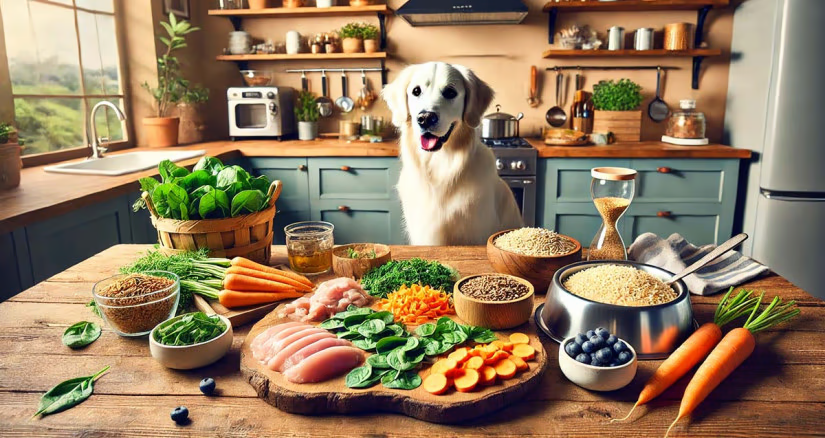 Sanity
Sanity
6+ MIN
23/09/2024
Home-Cooked food for pets
This trend, like many others, is making its way into the pet food industry and driving consumers to adopt more process controlled feeding regimens for their pets such as home-cooked meals.2
Home-cooked foods may serve many benefits for the pet but also require careful planning and consideration to ensure meals are nutritionally balanced and safe.
What constitutes a balanced diet?
Many home-cooked pet food recipes available online are unbalanced and do not provide adequate nutrition for the pet.3 A balanced diet must include the appropriate proportions of all nutrients: proteins, fats, carbohydrates, and vitamins and minerals, for a specific life stage and species. Similar to humans, the nutritional requirements for dogs and cats are quite specific and vary based on factors such as age, weight, spayed/neutered, and current health conditions. It is essential to seek advice from well-educated, credentialed individuals (such as a veterinary nutritionists or veterinary technician nutritionist) on these requirements to ensure adequate nutrition when preparing home-cooked pet diets.
Protein – Protein provides amino acids that dogs and cats need to maintain muscle mass and essential body functions. An essential amino acid cannot be synthesized and therefore are required in the diet and are required for maintenance, growth, gestation, and lactation. 4 Non-essential amino acids can be synthesized in the body from other amino acids and co-factors and may not necessarily be needed to be supplied through diet alone. According to AAFCO, the minimum protein requirement for dogs is 18.00% on a 100% dry matter basis (DMB) for adult dogs and 22.50% to support growth and reproduction. The minimum protein requirement for cats is 26.00% on a 100% DMB for adult cats and 30.00% to support growth and reproduction.5
Fat – Dietary fats are a source of concentrated energy for storage and utilization in the body and supply fatty acids that dogs and cats cannot synthesize (essential fatty acids).4 While some fat sources have been labeled as 'good' or 'unhealthy' it is important to select fats in a homemade diet that bring in an appropriate amount of fatty acids. Therefore, while some dietary fat sources sound better, they may not be the most ideal for the pet's requirements. According to AAFCO, the minimum fat requirement for dogs is 5.50% on a 100% DMB for adult dogs and 8.50% to support growth and reproduction. The minimum protein requirement for cats is 9.00% on a 100% DMB for adult cats and 9.00% to support growth and reproduction.5
Carbohydrates – Carbohydrates provide a good source of energy and dietary fiber for animals and are the primary energy source for omnivorous animals.4 Even though there is not a carbohydrate minimum requirement for cats and dogs according to AAFCO, it is important to note that glucose is the brain's preferred source of energy, which comes from the breakdown of carbohydrates. Additionally, carbohydrates, like fruits and vegetables, may also add notable amounts of vitamins and minerals to the diet.
Vitamins and Minerals – Adequate and balanced amounts of vitamins and minerals are essential to support normal physiological and metabolic functioning in animals.4 Vitamins and minerals are often supplemented in pet diets to ensure nutritional adequacy.
Advantages of home cooked meals
Customization – Home-cooking meals for a pet allows for customization specifically for a pet who has specific dietary needs or has food intolerances.
Control – Home-cooking meals for a pet allows the owner a greater control over what ingredients go into the meal, as well as what ingredients are not included. However, 'diet drift' can be just as dangerous as the benefits of knowing what all is in a pet's diet. Diet drift is a term used to describe the shifts over time to a pet's homemade diet that can lead to nutrient imbalances.
Bonding – Preparing a pet's meal can provide a sense of bonding between the pet and their owner.
Potential risks and how to mitigate them
Nutritional Imbalances – One of the most significant risks associated with homemade pet foods is having a diet that is not complete and balanced. As stated above, a balanced, home-cooked diet includes adequate levels of protein, fat, amino acids, fatty acids, vitamins, and minerals according to AAFCO for the animal, which is vital to follow to ensure proper nutrition for the animal's optimal health. Providing an appropriate balance of these requirements may be difficult to navigate for the average consumer, so one may consider consulting with a veterinary nutritionist or a veterinary technician who specializes in nutrition to help design a diet that meets all the necessary nutritional requirements for a pet. Unless the diet is sent off to a third-party laboratory for testing, it is truly unknown if the diet meets all nutrient requirements.
Food Safety – When cooking at home for a pet, safe food handling and proper cooking techniques are critical to prevent the potential for foodborne illness. Not only are foodborne pathogens dangerous for the animal, but they will cause serious illness in the owner as well. Like checking nutrients, diets can be sent to third-party laboratories to test for microbes that may be present in the food. Similar to human food, the FDA has established a zero-tolerance policy on levels of Salmonella bacteria in pet food.6
Time and Cost – While the potential for bonding is present, home-cooking meals for a pet can be time-consuming and often more expensive than purchasing a commercial pet diet. One should consider the time, cost, and storage required before beginning to cook for their pet.
Practical tips for starting
Consult Your Veterinarian – Always consult with a Board-Certified Veterinary Nutritionist or a veterinary technician who is specialized in nutrition before changing a pet's diet. These individuals can be located online or through a local veterinarian but will require a consult and review of medical records before any diets are formulated.
Start Slowly – When transitioning a pet to a new diet, start slowly. Gradually introduce new foods into the pet's diet to avoid gastrointestinal upset. This is true for all diet transitions whether commercial or homemade.
Keep Records – When introducing a pet to a new food or diet, it may be helpful to document recipes, ingredients, and the pet's reaction to the new diet. This can be useful for monitoring health over time and can help inform whether changes to a diet would benefit the pet. It is also important to document the recipe in grams to keep log of any variations to minimize diet drift.
Consider Pre-Made Fresh Foods – Preparing home-cooked meals can be a daunting task for any pet owner and is a huge task to take on. Therefore, if pet owners still would like to have a gently cooked option they can consider pre-made fresh, gently cooked meals instead. Many options available on the market also offer customization if the pet has specific dietary needs or preferences.
Conclusion
Home-cooking meals for a pet can be a rewarding way to cater to their dietary needs; however, it requires a significant commitment to ensure nutritional balance and safety. By educating oneself and seeking professional advice, pet owners can provide meals that not only satisfy but also contribute to the health and well-being of their pet. Whether planning to supplement with home-cooked meals or fully committing to them, it is important to remember that these efforts have a direct impact on a pet's health.
Source: BSM Partners
References
International Food Information Council. 2024 Food & Health Survey. June 20, 2024. https://foodinsight.org/2024-foodhealth-survey/
Phillips-Donaldson, D. (2024, January 4). 5 more human food trends for pet food to keep top of mind. Pet Food Industry.
Fell, A. (2013, July 15). Homemade dog food recipes can be risky business, study finds. UC Davis. https://www.ucdavis.edu/news/homemade-dog-food-recipes-can-be-risky-business-study-finds
National Research Council, Division on Earth, Life Studies, Committee on Animal Nutrition, Subcommittee on Dog, & Cat Nutrition. (2006). Nutrient requirements of dogs and cats. National Academies Press.
Official Publication; Association of American Feed Control Officials: Champaign, IL, USA, 2024.
Phillips-Donaldson, D. (2021, May 3). Will zero tolerance for salmonella in pet food ever change?. Pet Food Industry. https://www.petfoodindustry.com/pet-food-market/blog/15467710/will-zero-tolerance-for-salmonella-in-pet-food-ever-change
 Formulation
Formulation
3+ MIN
19/09/2024
Callizo Aromas enters the U.S. market with a new facility in Palestine, Texas
'Our experience in establishing operations in Palestine has been remarkably smooth, especially compared to our previous expansions in Latin America,' says Santiago Callizo, DCEO. 'The local Economic Development Corporation (EDC) has been instrumental in this process, providing attentive guidance and support throughout.' The City of Palestine is excited to welcome Callizo Aromas and the job opportunities it will provide. Learn more about this company and why it chose Palestine, Texas, to expand its operations. Callizo Aromas developers create personalized fragrances for several industries Callizo Aromas has four main divisions, each of which will have production arms at the Palestine facility. Employees for Callizo Aromas create scents for the following markets: Fragrances: This division creates perfumes for companies in the personal care, clothing, and home care industries. Flavors: This division works with companies that produce snacks, confectioneries, dairy products, meat products, and beverages. Callizo says, 'If it's food, we probably have a flavor for it.' Zootechnical Products: This division focuses on animal nutrition, making feed more palatable while offering antifungal and antioxidant additives to ensure the quality and safety of the food. Pet Aromas: This division develops flavors that improve the palatability of dog and cat foods, so pets find their meals both nutritious and delicious. Callizo Aromas produces fragrances for a variety of products that most consumers use daily. The company recognizes that each project and application is unique, which means each client requires tailored solutions. Instead of taking a one-scent-fits-all approach, Callizo Aromas works closely with its clients to develop the best possible flavors or fragrances. Palestine, Texas, offers strategic locations and a welcoming community Callizo had nothing but good things to say when asked about Palestine, Texas and his company's decision to expand its operations here. When asked why he chose Palestine as the newest location for Callizo Aromas, he carefully listed several economic and quality of life reasons that influenced his decision: Palestine's geographic location offers excellent connectivity and logistical advantages. It is easy to travel to the Callizo Aromas plant in Mexico, allowing for rapid resource sharing. Palestine's natural beauty, including its lush vegetation and picturesque landscapes, aligns with the company's appreciation for nature-inspired products. The local community has made Callizo Aromas' owners feel at home, reinforcing their decision to invest in this location. 'When companies look to move or expand their operations, they often highlight a few key regions that meet their geographic and transportation needs,' says Christophe Trahan, Economic Development Director at the Palestine Economic Development Corporation (PEDC). 'However, the intangible assets – like the beautiful landscape and welcoming community – are what make a town like Palestine stand out above the rest.' The Palestine-Callizo Aromas partnership is just starting to bloom When asked what Palestine-Texas would smell like if it were a fragrance, Callizo came up with a harmonious blend of aromas that captures the essence of the region: The top notes have a sweet floral aroma reminiscent of dogwood flowers, evoking the area's natural beauty. The middle notes have rich woody tones that reflect the surrounding forests and timber heritage. The base notes have subtle accents of herbal moss, with a gentle touch of leather, nodding to the region's historical industries. Callizo says the unique fragrance would embody the natural charm, industrial legacy, and warm spirit of Palestine, Texas. As Callizo Aromas moves to the area, local residents and vendors will do their best to make the company feel welcome and reflect the beautiful description Callizo provides. Join Callizo Aromas in Palestine, Texas Callizo Aromas saw both Palestine's beauty and the economic benefits of moving here. As this company expands its operations, know that there is plenty of room for additional employers and industries. Contact us today to discuss business opportunities in Palestine and how PEDC can help you expand your operations to the area. Source: PalestineTexas
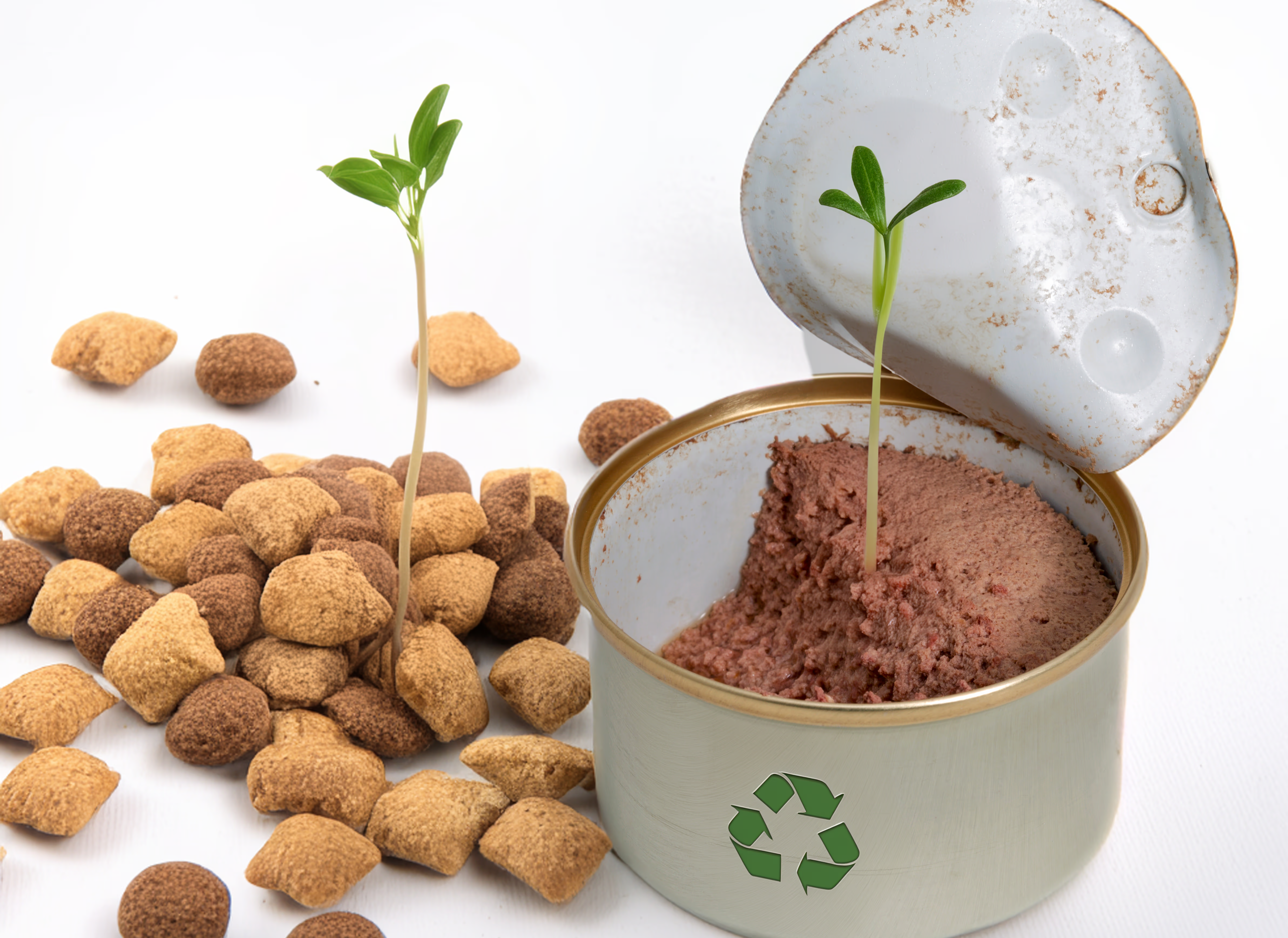 Trends
Trends
4+ MIN
19/09/2024
Por Iván Franco
Social responsibility: Its importance in the pet food industry
Sustainability growth in pet food In a world where natural resources are limited and ambient awareness is rising, sustainability is not a trend, but a long-term change in consumer culture. In this context, pet food industries in Latin America are rapidly adopting social responsibility procedures, which aim to minimize environmental impact and add value to society and consumers. Outstanding examples of reducing waste Many companies have been striving to reduce waste and optimize their production processes. For example, Mars Petcare is taking significant measures to reduce its carbon footprint by redesigning their packaging for recyclable ones. Also, they are transitioning to use renewable energy in all facilities by 2025. In addition, they launched programs for using recyclable materials in their products, teaching consumers about the importance of recycling. In Brazil, BRF is committed to becoming a Net Zero carbon emissions by 2040 using renewable energies, the promotion of low-carbon agriculture, and the launch of carbon-neutral products. Nestlé Purina invests in operations in Latin America, including the extension of its facilities in Silao, Mexico. It has become one of the biggest in America Latina and uses advanced technology to reduce environmental impact. Nestlé Purina promotes the reduction of greenhouse effects and the use of recyclable packaging. Innovations in recycling Recycling is a key factor in sustainability strategies in the industry. By implementing packaging recycling programs in Perú and Colombia, Nestlé Purina promotes reusing materials and reducing the use of plastic materials and plastic. This initiative not only helps to preserve the environment but also to encourage circular economy, which is a benefit to the company and the local community. In Brazil, Adimax launched campaigns to collect and recycle post-consumer packaging, making them useful for backpacks or pencil cases. It not only reduces plastic waste but also supports animal shelters donating food in exchange for collected packaging. In Mexico, Nupec stands out for its commitment to sustainability through several initiatives. The company carried out a recycling program, called 'Let's Recycle', which encourages consumers to return used packaging for recycling. In addition, by working with local suppliers, Nupec promotes national trade and ensures sustainable and high-quality practices in the section of raw materials. In its Innovation and Technology Centre, Nupec also does continuous research that focuses on digestibility and palatability, ensuring optimum pet nutrition. In Perú, many pet food industries are committed to social and ambient responsibility. An outstanding example is Rintisa which implemented programs about reusing packaging and materials by transforming them into useful products and promoting a circular economy in the region. Molino Chacabuco, a company from Argentina, also stands out for its support. It has significantly reduced its use of paper and waste; it uses renewable energy for 90% of its production and collaborates in recycling and circular economy projects like creating dog shelters with Tetra Pak. Moreover, Molino Chacabuco sustains a partnership with Fundación Banco de Alimentos by donating and participating in campaigns that aim to reduce hunger and improve nutrition in local communities. Material reuse programs Reusing materials is essential to close the product lifecycle. Agroindustrias Baires in Argentina developed a program about reusing balanced food packaging, in which consumers can return post-consumer bags to transform them into useful products. This initiative not only promotes sustainability but also supports the local community by donating food to animal shelters. The company Carozzi, from Chile, showed a strong commitment to sustainability in pet food manufacturing. It incorporates recycling and reusing materials practices in its production process, reducing waste and promoting a circular economy. Publishing ethical codes and sustainability reports Transparency is fundamental to sustainability. Many industries are publishing their ethical codes and sustainability reports as part of their commitment to social responsibility. In Ecuador, Bioalimentar launched its Memorias de Sostenibilidad, following the Global Reporting Initiative (GRI) standards to evaluate its economic, social, and environmental performance. These reports not only strengthen the link with their interest groups, but they are also exercises of transparency and responsible management. Impacts and benefits of sustainable practices Reducing, recycling, and reusing measures benefit the environment and improve corporate image, as well as consumer loyalty. By adopting sustainable practices, companies not only answer society's call but also contribute to creating a sustainable and responsible future. In addition, these initiatives can generate important long-term savings. Efficient energy, reducing waste, and reusing materials lessen operational costs and open up new market opportunities, especially between environmentally conscious consumers. Conclusion and future perspectives In Latin America, the pet food industry is making significant efforts to integrate sustainability into its operations. These initiatives are essential to satisfy consumer expectations and ensure a positive impact on the environment and society. The companies already mentioned are examples of how the industry is a leader for a green, cleaner, and responsible future, creating a long-lasting impact at local and global levels. In the future, more companies are expected to adopt these practices, driven by the growing demand of consumers and government regulations. Partnerships between companies, governments, and communities will be the key to moving in this direction, ensuring sustainable development for the pet food industry and the region. By: Iván Franco Source: All Pet Food Magazine
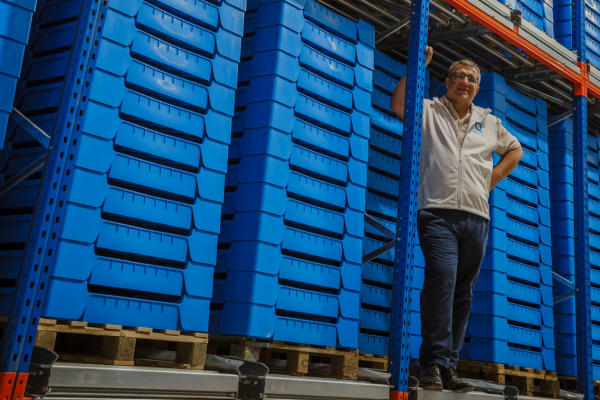 Insect Based
Insect Based
6+ MIN
17/09/2024
Tenebrio Molitor: Insect protein that helps control allergic dermatitis
Food allergies are a more common problem than we often think for the pets we live with. Almost a third of the world's dog population suffers from a more or less severe intolerance during their lifetime. Sometimes, they manifest through intense itching in areas, such as the paws, back, or abdomen. Sometimes, they develop into flaking of the skin. And in some cases they lead to rashes, loss of fur and other secondary lesions caused by scratching, which can even trigger a dangerous bacterial infection if not treated in time. They also often cause gastrointestinal problems, ranging from vomiting to diarrhoea to upset stomach inflammation, or recurrent ear infections due to sustained irritation of the ear canals. And even respiratory problems. Among the most allergenic foods are animal proteins, which at the same time, and under normal conditions, are essential for the correct development of our pets. Of these animal proteins, the ones that cause most intolerances are beef, followed by lamb, chicken, and fish. All of them are usually included in the formulation of the most balanced feeds we can find on the market, together with wheat, maize, soya, and dairy products, the other commonly consumed ingredients that can cause the most problems of this type. Detecting these intolerances is not always easy, as the same symptoms may respond to other types of skin problems or illnesses of a different nature. But if there are suspicions, a provocation test and elimination of certain ingredients from the diet can help us to clear up doubts and find solutions. Hypoallergenic protein Fortunately, there are alternatives. One of them is the protein from the Tenebrio molitor or mealworm, a extremely versatile insect that offers top-quality ingredients for animal feed. The meal that Tebrio has managed to extract from this coleoptera not only achieves 72% crude novel protein, but is also more than 90% digestible and highly palatable. Studies carried out in recent years have also revealed that it has a regulating effect on the microbiota, which promotes the balance of the intestinal flora and improves the animal's immune response in periods in which, for one reason or another, there has been a drop in the level of defences. Furthermore, and this is particularly important when it comes to allergies, our pet's organism will not have an acquired memory of the protein of this insect, so it will be much less likely to cause a diet-induced skin alteration. In this regard, a recent clinical trial conducted by scientists at Chungbuk University in South Korea reveals that this ingredient has a high degree of hypoallergenicity. This research was carried out on 19 atopic dogs that also suffered from adverse skin reactions to food. They were classified into 3 groups. The first group of seven individuals received an insect-based diet. The second group of six dogs was given a salmon diet. And the third, of six others, fed a commercial or homemade diet that was also hypoallergenic in principle. The experiment was spread over twelve weeks. The degree of lesions was assessed according to the Canine Atopic Dermatitis Extent and Severity Index (CADESI-4). At the same time, transepidermal water loss (TEWL) and the pruritus visual analogue scale (PVAS) were also evaluated. Well, after 8 weeks, the group of dogs fed on Tenebrio molitor protein showed a significant decrease in CADESI score compared to the other two groups. The same was true after 12 weeks. Also, there was a decrease in transepidermal water loss at the end of the two and a half month test. And although the study universe, the number of animals surveyed, was small, the scientists concluded that the preliminary results reinforced the thesis that mealworm protein can help to reduce skin barrier dysfunction and the severity of skin lesions. Including those that the animal inflicts on itself in an attempt to soothe the itching it suffers. A unique molecular structure Insect-based diets have already been used in veterinary medicine to optimise production in industrial farms and fisheries for species, such as pigs, poultry, freshwater and saltwater fish, and shellfish. And since 2015, they have also been used to diagnose and treat food-associated allergic skin disorders. In Europe alone, there are dozens of pet foods that integrate insect protein and fat. All indications suggest that Tenebrio molitor protein has a unique molecular structure, both in terms of its amino acid sequence and its three-dimensional conformation. And that these differences mean that it goes unnoticed by the animal's immune system, which ultimately reduces the risk of triggering an allergic reaction. Because, in addition, their appropriate processing can also reduce the presence of potential allergens considerably, increasing the degree of tolerance in sensitive animals. At the same time, mealworm protein meal strengthens the immune system, as it contains low molecular weight antimicrobial peptides and an optimal proportion of fatty acids. It not only strengthens the intestinal flora, but also has antioxidant properties and can mitigate certain cell damage. Similarly, the fat extracted from the larva is rich in Omega 6 and 9, unsaturated fatty acids (>70%) and a natural source of oleic, linoleic and alpha linolenic acids. It has anti-inflammatory properties and such a low acidity that it is ideal for premium feed formulation. Sustainable feed And all this, with a low environmental footprint, is far lower than that of other conventional protein sources. According to consumption figures for the last decade, in 2014 the pet sector needed 36 billion kilos of food to meet global demand. Today it requires 57 billion. And next year, it will reach 60 billion as, far from stalling, the pet population continues to grow. And there is no sign of it slowing down. Especially in Europe, North America, and South America. Hence the importance and urgency of finding alternative sources of supply to relieve the pressure on the global animal protein market. And the need for these new resources to be environmentally friendly. From this perspective, insects represent an opportunity worth exploring. Their rearing and processing on an industrial scale emits very little greenhouse gas emissions and produces no waste of any kind. Similarly, the quality and safety of the ingredients obtained from them are fully tested and approved by health authorities. And their production requires infinitely fewer natural resources than any other farm to bring a comparatively much higher volume of protein to market. This allows us to optimise the use of available arable land and water to get the most out of nature's assets without exhausting them. The petfood industry has a promising future ahead, although it will have to continue innovating as it has done so far in order to find new functional ingredients that respond to specific nutritional and health concerns. And at the same time, it will have to adapt to the environmental requirements demanded not only by regulators, but also by customers. By Sabas de Diego, CTO at Tebrio, Spain Sabas has an academic background in Chemical Engineering and 20 years of experience in the agri-food sector. In 2014, he founded Tebrio together with Adriana Casillas, leading the technological development and supervising the team of engineers and scientists on which lies the activity of a pioneering company worldwide in the breeding and processing of insects. Previously, he headed the technical team at the Maguisa slaughterhouse in Salamanca, where he developed an in-depth knowledge of the agri-food industry and the legislation that regulates it. During this time, he managed R&D projects in the swine sector and managed budgets in upwards of 12 million euros. Source: All Pet Food Magazine
 Market Information
Market Information
4+ MIN
16/09/2024
Zoomark 2025: spotlight on the supply chain
Bologna (Italy), May 2025: this is the next unmissable appointment for the international pet industry. Registration is still open for the 21st edition of Zoomark, the international pet food and pet care trade show. The 2025 event will feature new sections, covering over 68,000 square meters of exhibition space, attracting leading exhibitors and visitors from across the globe, as Luisa Bersanetti, Exhibition Manager at Zoomark, explained. Q: Zoomark 2025 is already around the corner. What are your main goals for this new edition of the show? A: 2023 was a record-breaking year, with over 68,000 square meters of exhibition space, 1,060 exhibitors from 57 different countries and an incredible 28,000 visitors. For the next show we are even more ambitious, and the signs are already looking good as registrations have been flying in. We aim to offer an even more innovative and rich presence of companies in the pet industry and stimulate the interest of the increasingly numerous operators from all over the world, also thanks to the new Buyers' Program, which will bring together supply and demand through pre-arranged B2B meetings. Q: Zoomark 2025 it's shaping up to be a remarkable event, especially with the introduction of some brand new projects, as the new Factory Area. Could you tell us a bit more about what Factory is and what inspired its creation? A: Factory is a new space specifically designed to highlight the entire manufacturing supply chain for the pet industry. We recognized that there's a growing demand for a dedicated platform where suppliers of raw materials, innovative ingredients, packaging, logistics, and other essential services can connect directly with manufacturers and distributors. The idea is to create a dynamic environment where innovation, sustainability, and quality take center stage, offering companies a golden opportunity to showcase their latest developments and make significant business connections. To answer to the needs and requests of exhibitors and visitors, interested to specific categories of products, the new layout has been designed to optimize visit times to the new Factory area, facilitated by a more efficient, fluid and easy-to-read exhibition itinerary. Q: You mentioned innovation and sustainability as key themes for Factory. How these will be featured? A: Innovation and sustainability are at the heart of what we're doing with Factory. For instance, in the area of raw materials and ingredients, we're seeing a shift towards natural, organic, and sustainable options. Consumers are more conscious than ever about what they're feeding their pets, so there's a big push towards healthier, more nutritious products. We'll have exhibitors focusing on alternative solutions like insect flours and plant proteins, which are gaining traction as sustainable options in pet food. Packaging is another area where sustainability is critical. We know that pet owners are increasingly concerned about the environmental impact of packaging. That's why Factory will spotlight the latest in eco-friendly and smart packaging solutions. These innovations not only help preserve product quality but also reduce waste and meet the new European regulations on packaging reuse and recycling. Q: It's clear that Factory will cover a wide range of important topics. Beyond the exhibition of products and services, will there be any educational opportunities for attendees? A: Absolutely. Education is a big part of what we aim to offer at Zoomark 2025, and Factory will play a key role in this. Inside this area we will organize seminars, workshops, and panel discussions that will allow companies to share their expertise and insights. These sessions will cover a range of topics, from the latest trends in sustainable ingredients to innovations in logistics and packaging technology. It's an opportunity for professionals to learn, exchange ideas, and stay ahead of the curve in this rapidly evolving industry. Q: That sounds incredibly valuable for attendees. Now, regarding companies exhibiting at Factory, who are the main target exhibitors, and what can they expect to gain from participating? A: The main targets for Factory are supply companies for manufacturers and distributors of pet foods, accessories and pet care products. This includes companies supplying raw materials, premixes, semi-finished products, and those specializing in production and packaging equipment. We're also looking at companies that provide cutting-edge logistics, industrial services, and distribution solutions. By exhibiting at Factory, these companies will gain unparalleled visibility within the global pet industry. They'll have the chance to connect with key decision-makers like purchasing managers, quality managers, R&D experts, and production engineers. It's a unique opportunity to establish or strengthen their presence in a market that's not only growing rapidly but is also incredibly receptive to innovation. Q: It certainly seems like Factory will be a must-visit area for industry professionals. Finally, what would you say to companies considering exhibiting at Factory or attending Zoomark 2025? A: I would say that Zoomark 2025, and especially the Factory area, is an unmissable opportunity for anyone in the pet industry. Whether you're looking to showcase your latest innovations, connect with potential business partners, or simply stay informed about the latest trends, this is the place to be. Participating in Factory could open doors to new business deals and collaborations that could drive your company's growth for years to come. So, don't miss out and join us at Zoomark 2025! Source: Zoomark
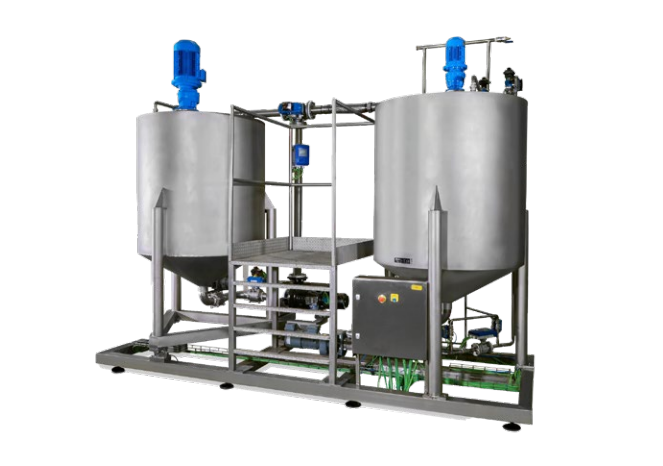 Extrusion
Extrusion
2+ MIN
11/09/2024
Recovery of by-products in the manufacture of pet food
Challenges with wet by-products
Wet by-products have a high moisture content, making them difficult to handle due to their rapid decomposition and the generation of unwanted microorganisms that can put pet health at risk. Generally, these by-products are marketed at low value for feed farm animals or are discarded.
Problems with process fines
Fines are often reinserted inefficiently into the grinding or mixing process, leading to several problems:
Grind a product that has already been ground
Consume additional energy in grinding
Wear on hammers and mill sieves
Affect the capacity of the equipment that reprocesses these by-products
Sustainable solution: By-product Recovery System (SRS)
The By-product Recovery System (SRS) is a proven solution to reduce, reuse and recycle both wet and dry by-products, regardless of size, temperature and moisture content.
SRS components
The SRS has two tanks:
Homogenization tank: receives the by-products to be recovered. It has a specially designed blade that rotates at high speed to achieve a homogeneous mixture (slurry) with an approximate concentration of 20% by-products and 80% water at a temperature between 40 and 50 °C.
Maintenance tank: once the homogeneous mixture is achieved, it is transferred to this tank through pipes. Here, a mixer keeps the slurry homogeneous and at the proper viscosity.
The SRS control system communicates with the preconditioner-extruder PLC to ensure the correct water content within the preconditioner and extruder, avoiding unwanted variations in moisture content and guaranteeing optimal quality and uniformity of the final product.
Advantages of SRS
Recovery of investment in a short time
Immediate use of all by-products, avoiding the generation of unwanted microorganisms
Optimization of process times
Decrease in labour requirements
Improved traceability
Achievement of automation
Compliance with FDA and EHEDG certifications
Made of stainless steel
Adaptable to plant spaces through horizontal or vertical layout
SRS sizing
To size the appropriate SRS for your process, it is necessary to determine the number of by-products generated. With this information, the appropriate model can be selected. There are three standard models: SRS150, SRS300 and SRS600, which recover 150, 300 and 600 kg/h respectively. Special solutions can also be designed according to specific needs.
By: Clivio Solutions
Source: All Pet Food Magazine
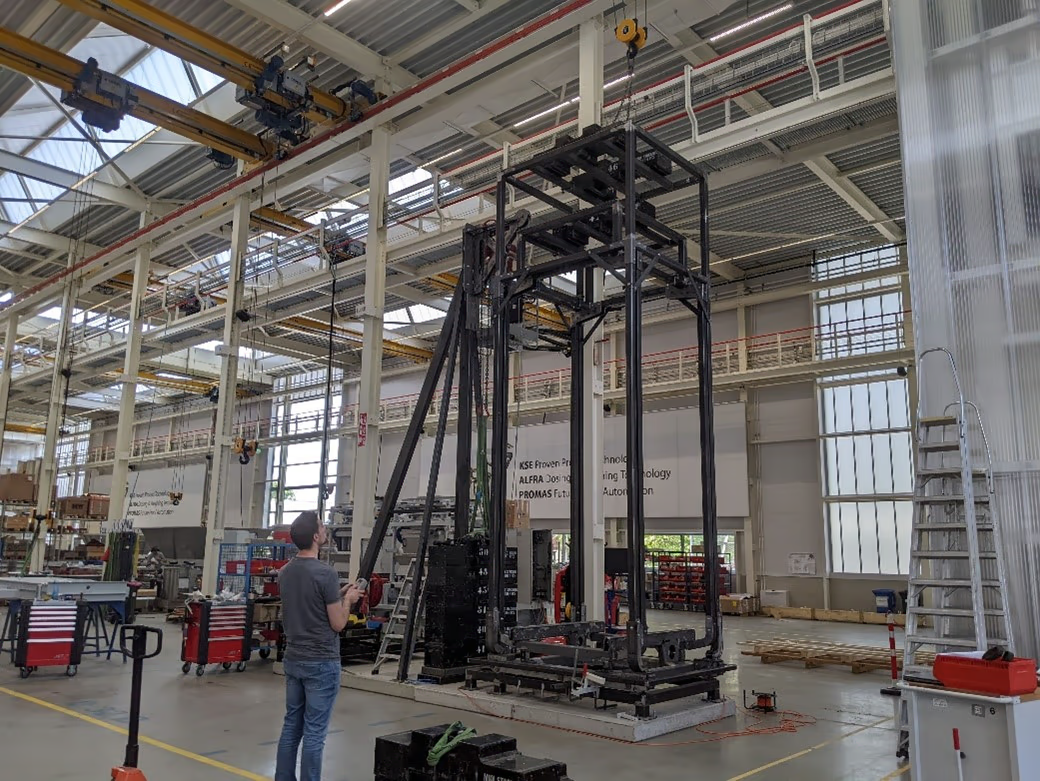 Dosing
Dosing
3+ MIN
10/09/2024
Innovating together: A new development for the premix pet food industry
The customer's choice of the CS-WP solution An American-based customer of KSE, operating in the premix industry, selected the CS-WP solution due to an urgent need to optimize space utilization in their production facility. This innovative solution enabled them to save significant vertical space, with reductions of 4 to 5 meters compared to a conventional weighing system. Additionally, the CS-WP system offers direct separation of contaminants for all raw materials, ensuring the entire facility remains free from contamination. Another customer in Spain, a leading manufacturer in the food additive industry, has also expressed interest in the CS-WP solution because of their stringent contamination control requirements. The CS-WP system allows macro ingredients to be safely transported in dedicated containers, ensuring clean and flexible distribution to three separate mixing lines. Exploration of market-based alternatives The customer explored two alternative solutions. Initially, a traditional pneumatic conveying system was considered but dismissed due to hygiene issues and excessive energy consumption. The second option involved a container concept relying on AGVs (Automated Guided Vehicle). Ultimately, KSE's CS-WP concept emerged as the most fitting and seamlessly integrable solution, enabling the maintenance of the desired compact building height. Future expansion and developments The client positions the CS-WP project as the ''Next Generation Plant'', hinting at the possibility of establishing future plants based on the same concept. This marks the inaugural joint project for the Spanish customer and KSE, with aspirations to extend this concept to other facilities, thereby assuming a pioneering role in the Spanish food additive industry. A breakthrough solution The CS-WP emerged as a groundbreaking weighing solution within the ACT (Automatic Container Transfer) framework, renowned for its internal transport capabilities. Manufacturers are seeking space-saving solutions in their plants while aiming to achieve minimal contamination by dispensing products directly into containers. Tailored to accommodate a wide dosing range, this solution stands out for its versatility. Intensive development process The concept promptly resonated with our customers' needs and industry demands, particularly in sectors like premix and pet food. The development process of the CS-WP entailed tackling several design challenges, such as achieving optimal balance in the setup. With dimensions of approximately 1.5 meters x 1.5 meters and a height of 5 to 6 meters, this resulted in a column four times as tall as it is wide. This configuration posed potential tipping hazards, especially when the system was in motion while carrying weight at the top. To prevent this, rollover safeguards were implemented, and extensive testing was performed. Another crucial aspect involved a meticulous examination of the system's extraction process. Customers typically invest in an ACT system to maintain a pristine working environment with minimal contamination. However, if dust escapes through open joints during each movement, this objective is compromised. Moreover, the extraction process must not interfere with the weighing signal during the dosing process, ensuring that accuracy is not compromised. Following extensive consultation and collaboration with suppliers, multiple concepts were devised and executed by the mechanical, electrical, and software teams. Presently, two variants are available: one where dust from the filters returns with the product, minimizing contamination but ensuring all product accompanies it through processing, and another where dust extraction directs waste to a remote unloading point, eliminating contamination but resulting in waste. The selection between these variants depends on the customer's specific needs and requirements. The operational phase During the implementation phase of industrial solutions, addressing technical challenges is only part of the equation; understanding real-world usage is equally vital. Hence, KSE engages its service department from the beginning of a project to ensure that aspects, such as cleaning positions, accessibility, and installation safety are meticulously accounted for. This approach establishes a robust groundwork for a successful project, enhancing both efficiency and safety. By: KSE Process Technology Source: All Pet Food Magazine
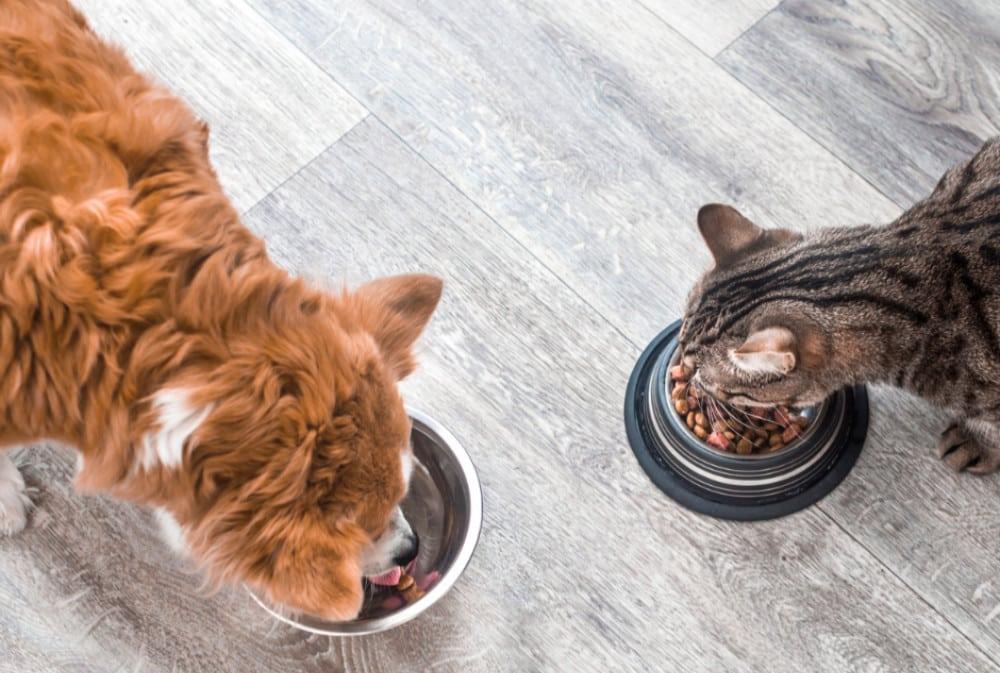 Palatants
Palatants
2+ MIN
09/09/2024
Data-Driven innovation for robust product consistency
To address this, an innovative data-driven approach utilizing several analytical techniques can be implemented. Chemical characterization of raw materials—focusing on parameters such as protein, ash, fat, moisture, amino acids, and biogenic amines—is essential for monitoring variability between different types and suppliers of these raw materials. Ensuring robustness and consistency involves several key steps: Comprehensive Ingredient Analysis: Regularly analyzing raw materials for their chemical composition helps identify and control variability. This analysis includes measuring levels of proteins, fats, moisture, and other critical components. Predictive Modeling: Utilizing advanced predictive modeling techniques can classify chemical fingerprints of raw materials quickly and accurately. These models help in anticipating and compensating for variations, maintaining a consistent quality in the final product. Supplier Evaluation: Continuously evaluating suppliers based on the chemical profiles of their materials ensures that only the most consistent and high-quality raw materials are used. Quality Control Protocols: Implementing stringent quality control protocols at various stages of production helps detect and address deviations from the desired chemical profiles. By integrating these strategies, the development of palatants can achieve higher robustness and consistency, leading to better product performance and increased pet satisfaction. Data-driven analytical techniques These techniques involve leveraging data analysis methods to inform decision-making. Predictive modeling for consistency The integration of fingerprint data with advanced predictive modeling techniques allows for the classification and comparison of raw materials. Machine learning algorithms can be trained on the chemical fingerprints to predict the quality and consistency of those samples, ensuring that variations are detected and managed effectively. Implementation strategy This step is important to develop actionable strategies for optimizing processes and outcomes. Conclusion A data-driven approach to managing the variability of natural raw materials in palatants and pet food can significantly enhance product consistency and robustness. By leveraging advanced techniques such as chemical characterization, fingerprint analysis, and predictive modeling, we ensure our products meet the highest standards of quality and palatability for pets. This innovative strategy not only maintains consistency but also drives continuous improvement in our product offerings. By comprehensively analyzing raw materials, rapidly classifying chemical fingerprints, and implementing predictive models, we can anticipate and mitigate variations, leading to a more reliable product. Moreover, continuous supplier evaluation and stringent quality control protocols ensure that only the best ingredients are used, further reinforcing the robustness of our palatants. This holistic approach not only meets current quality standards but also sets a foundation for ongoing enhancement and innovation in pet food flavor enhancers. For more information, contact AFB's Customer Technical Insights team by visiting afbinternational.com/contact or your AFB Account Representative. Source: AFB International
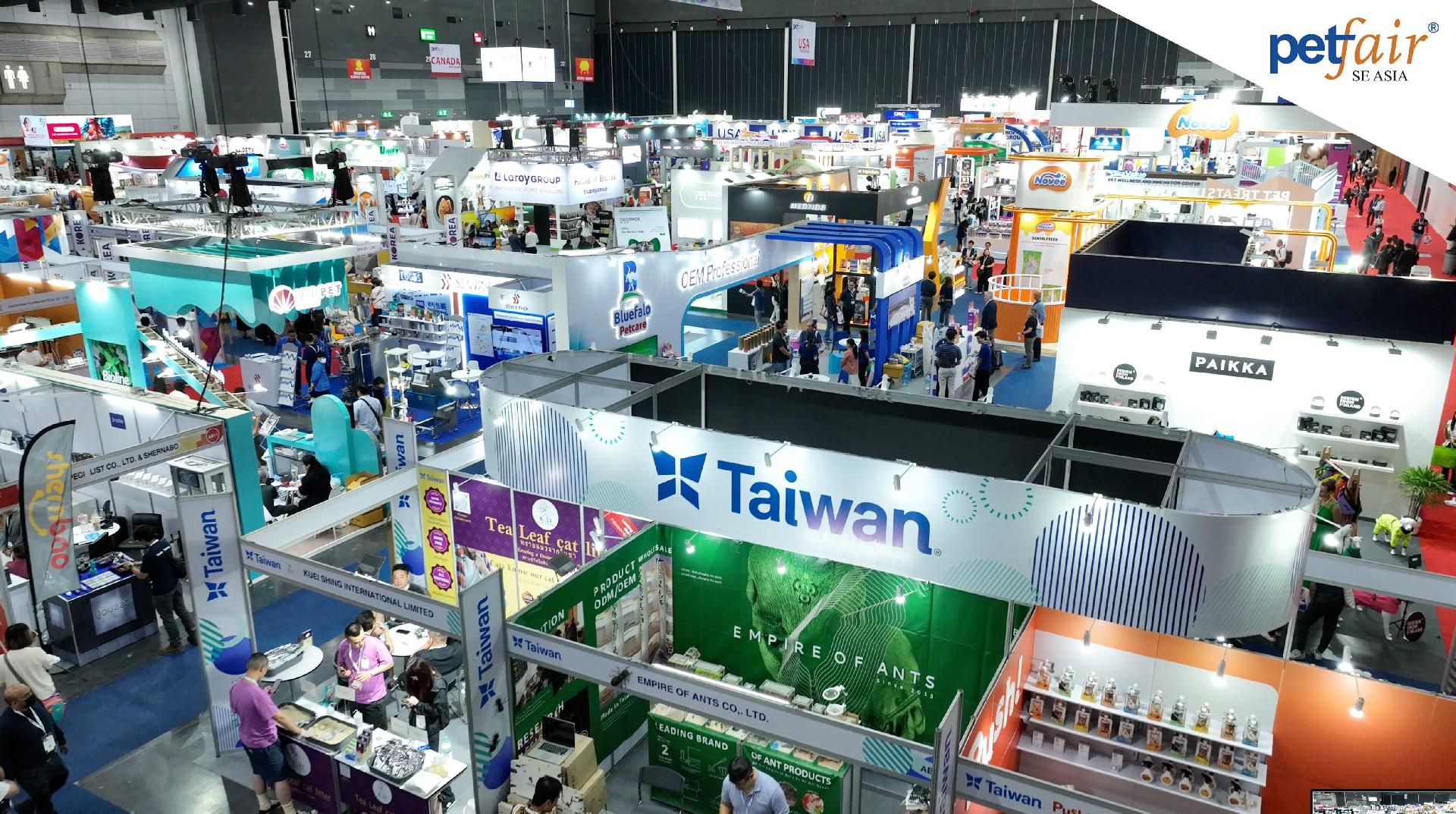 Market Information
Market Information
2+ MIN
06/09/2024
The Global Pet Industry is Meeting in Bangkok, Thailand
With its fully B2B show concept, Pet Fair South East Asia serves as a global partnership hub for distribution, retail, and sourcing far beyond the ASEAN region. Located in Thailand's vibrant capital, Bangkok, the 2024 edition will be held at the Bangkok International Trade and Exhibition Centre, covering well-over 20,000 square meters of exhibition space. The show is jointly organized by VNU Exhibitions Asia Pacific, based in Bangkok, Thailand, and Globus Events, the company behind Pet Fair Asia, based in Shanghai, China.
The 2024 edition of Pet Fair South East Asia will host 400 exhibitors from 45 countries, showcasing the entire pet industry value chain. As of the end of August, the exhibitor mix stands at 75% international and 25% local, highlighting the global nature of the event. Among the confirmed exhibitors, 39% are from East Asia, 34% from Southeast Asia, 18% from Europe, 6% from North America, and 2% from Oceania. On the visitor side, the organizers forecast 15,000 trade visitors from 75 countries.
"We are excited to welcome the international pet industry back to the exciting city of Bangkok," says Johannes C. Kraus from VNU Exhibitions Asia Pacific. "We look forward to delivering both exhibitors and trade visitors an unparalleled industry experience.'
In addition to a vibrant show floor, trade visitors can anticipate a comprehensive and international speaker lineup, featuring over 30 conference sessions covering a wide range of topics.
The 2024 edition of Pet Fair South East Asia will also bring back the popular networking event, 'One Night in Bangkok,' offering exhibitors of the show and their key customers a memorable evening high above Bangkok's skyline.
Pre-registered visitors can attend the show free of charge, while those who have not pre-registered will be required to pay a small on-site fee of 350 THB (approximately 10 USD).
For more information and to pre-register for free, visit www.petfairsea.com.
Preview the 2024 edition at https://www.youtube.com/watch?v=67Cg_kU_fqo
Watch the after movie of the 2023 edition at https://www.youtube.com/watch?v=OOHPhPAsD_c
Source: Pet Fair South East Asia
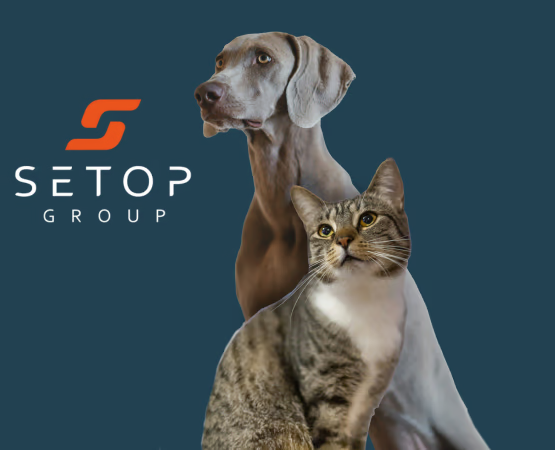 Laboratory
Laboratory
1+ MIN
05/09/2024
INNOCON implements an analytic process in oily matrices for pets
Implementing an analytic process to identify and determine volatile compounds as secondary indicators of fats and lipid oxidation through solid-phase microextraction and gas chromatography–mass spectrometry is an important sign of the company's commitment to quality and innovations in the pet food industry. Focusing on fresh and quality food, as well as animal welfare, not only improves the product offering in the market but also establishes new standards in the industry. Having the ability to identify and quantify lipid oxidation compounds, such as hexanal, 2,4-decadienal, and 2-heptenal, among others, at trace levels is crucial because these compounds influence consumer organoleptic perception. It is encouraging that companies like Innocon are leaders in the Biobío Region and contribute to scientific development and the local economy. Roberto Valenzuela, head of the R&D of Chemical and Instrumental Area, and his team are an example of how applied research impacts directly and positively on the pet food industry and, as a result, on society. By: SETOP Source: All Pet Food Magazine
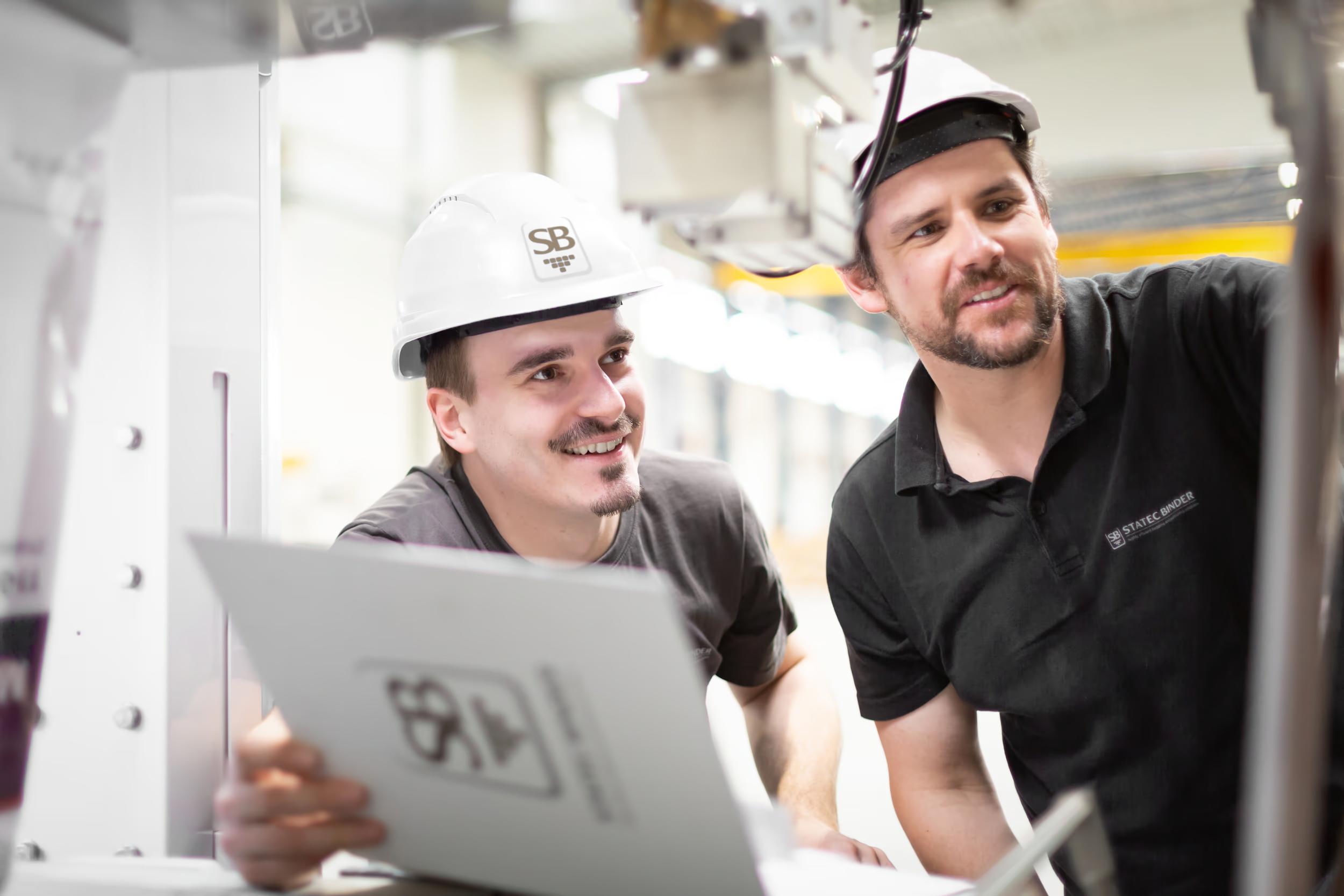 Packaging
Packaging
2+ MIN
04/09/2024
The STATEC BINDER customer service
Our comprehensive, worldwide customer service includes numerous services, such as inspections, detailed customer trainings on site, the storage of spare and wear parts close to the customer and extensive maintenance by our service technicians. The 1 - 6 - 11 service program enables customer advice and support after the delivery of a STATEC BINDER system with the highest level of expertise. The program allows the machines to be optimally adapted to the individual needs of the customer and enables our technicians to answer project-related questions in person. 1 - One month after commissioning The machines are installed by our technicians together with the customer, the production capacity is tested, and parameter checks are carried out. In addition, the future machine operators receive extensive training. 6 - Six months after commissioning The customer should already be confident and familiar with its system. The focus lies on fine-tuning the machine, whereby a further visit, parameter checks, refresher trainings and visual inspections are carried out. Further customer training takes place if required. 11 - Eleven months after commissioning Our service technicians visit the customer one more time and inspect the machine. The technicians make recommendations for a better use of the system in the future, in order to complete the fine-tuning process. Finally, an individual maintenance plan is drawn up for the respective system to ensure smooth cooperation in the future. In addition to the comprehensive service program, our customer service is also characterized by the wide range of spare and wear parts. Required spare parts can be ordered and shipped globally and easily. Our customers also benefit from our Remote Maintenance System. With this innovative technology, problems that cannot be solved by customers themselves can be identified from our company located in Austria. Beyond that, the further procedure can also be defined remotely. In addition, after the delivery of the machine, our customers get largely informed about the optimization and modernization of their systems by our service team. The focus lies on fine-tuning the machines with various modernization measures, such as new standards or updates. In this way, we can continue to help ensure that the high-quality systems perform reliably for many decades to come. By: STATEC BINDER Source: All Pet Food Magazine
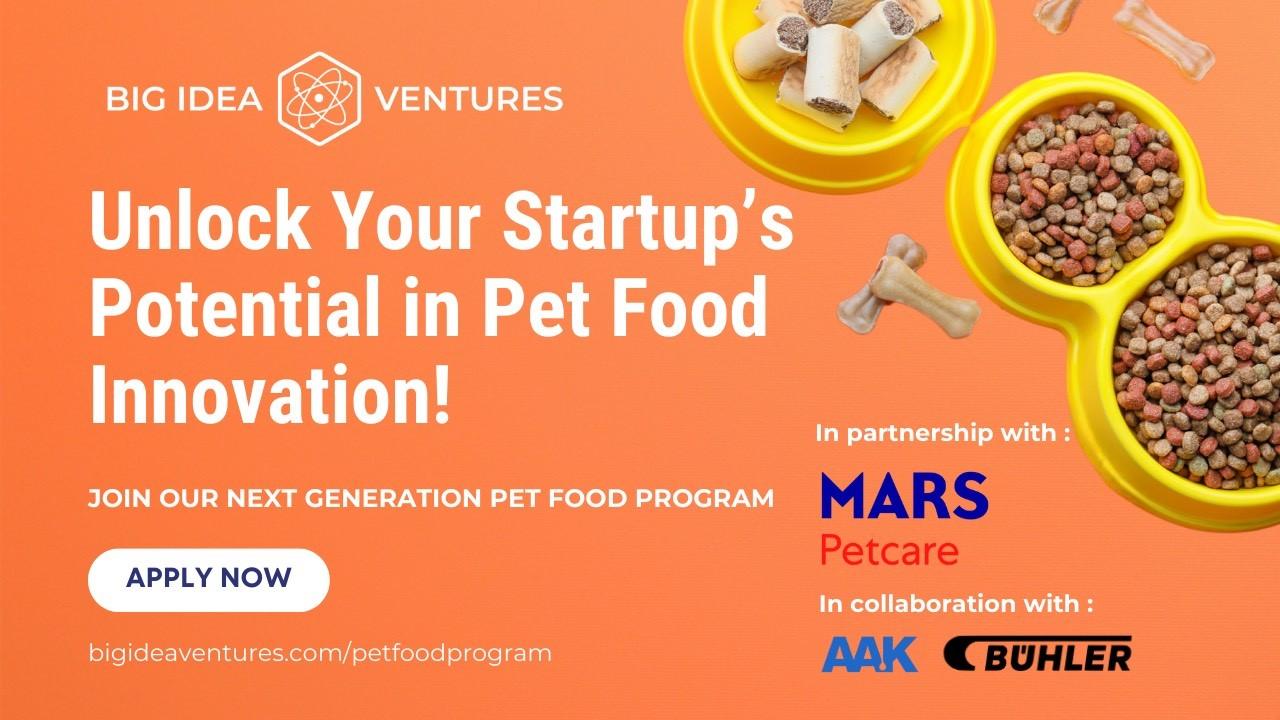 Market Information
Market Information
2+ MIN
03/09/2024
Exciting News: Big Idea Ventures, in partnership with Mars Petcare and Bühler Group, is launching the Next Generation Pet Food Program
The program is open to any food start-ups developing sustainable proteins and fats, novel ingredients with top-notch nutritional profiles, or pioneering processing technologies like upcycling food waste. It will run online in October and November, with participants joining us in Singapore during the International AgriFood Week on November 18, 2024. A message from Mars Petcare For our 100,000 Petcare Associates, Our Purpose: A BETTER WORLD FOR PETS also means a more sustainable world for pets, people and for the planet. We are constantly focusing on finding new ways to help pets and their owners live happy, healthy lives together. We are committed to investing in innovation to help us source the best ingredients to support healthy pets while reducing our environmental footprint. We are working on a number of research and development projects to identify new and innovative ingredients that reduce our environmental footprint and are nutritious for pets, focused on innovations in: Wet Animal Protein Solutions: Seeking innovative, sustainable sources of wet animal protein. Oil & Fat Solutions: Developing substitutes for traditional chicken fat and pork fat. Fiber Reduction from Protein-Rich Sources: Working on projects to reduce fiber content from protein-rich sources. Why It Matters We believe that our Purpose: A BETTER WORLD FOR PETS, also means a more sustainable world for pets, people and for the planet. We seek to support innovative businesses and actively foster collaboration opportunities in the pet care space, with the aim of contributing to a more dynamic and progressive industry that addresses the evolving needs of pets and their owners. To help us source the best ingredients to support healthy pets while reducing our environmental footprint, we are partnering with companies that focus on developing new and novel ingredients which are safe, lower carbon, available, nutrient dense, and delicious – while ensuring animal welfare, safety and quality are at the forefront. How you can join them? In collaboration with Mars Petcare, and with the support of AAK and Bühler, we have crafted a unique program tailored for human food startups eager to innovate in the sustainable pet food space. This program offers the chance to gain direct insights and support from pet food experts as you develop your initial pet food concept. Once your concept and pitch are polished with the BIV team, you'll have the exciting opportunity to travel to Singapore and present your innovation to a prestigious audience! For more information, visit us HERE Source: Big Idea Ventures
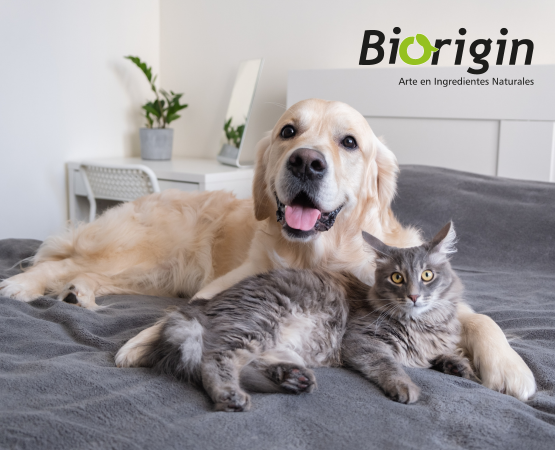 Palatants
Palatants
4+ MIN
02/09/2024
Essential care for your pets' skin and coat
However, when pets' skin and coat are not adequately cared for, health conditions may arise, including allergies, hormonal imbalances that cause hair loss, and parasite infestations, such as mange and seborrhea.
A growing trend indicating the change in the relationship between humans and animals is the humanization of pets, now seen as family members. According to Mintel's report, 61% of US pet owners agree that their pet's happiness and well-being are more important than their own.¹
That humanization is reflected in family habits, which include animals spending more time indoors, allowing them to sleep on the couch or bed, and wearing more clothes.
Therefore, skin and coat health care is essential to minimize pets' exposure to harmful factors, such as allergens, microorganisms, and parasites, which can affect the well-being of pets and those living with them.
So, how can we ensure our pets' skin integrity and coat health?
Ensuring pets' skin and coat health
Maintaining pets' healthy and beautiful skin and coat requires regular visits to a veterinarian for proper diagnosis and treatment.
However, following the tips below will help you maintain the skin and coat health of your cats and dogs, preventing diseases and promoting their well-being.
Pet hygiene: Bathing and brushing are crucial to keep the skin clean and free from parasites. The frequency of bathing depends on the breed, type of coat, lifestyle, and environment in which the animal lives. It is important to animal-friendly hygiene products, dry them thoroughly, and regularly brush your pet's to remove loose coat and free from parasites.
Balanced diet: A balanced diet should supply the nutrients your pet requires to maintain its skin strong, hydrated, and protected. Nutritional deficiencies may cause several dermatological conditions.
Apply sunscreen: Sunscreen should be applied to thinning hair and bald patches to avoid sunburns. Caution: use sunscreens specifically formulated for pets.
Prevent parasite infestation: Protect your pet from fleas, ticks, and other external parasites that can cause skin problems.
Dogs and cats can also benefit from the daily consumption of beta-glucans. Scientific evidence shows that beta-glucans can help alleviate atopic dermatitis symptoms, such as itching, redness, sloughing, thickening, and dryness.
Do you want to learn more about pet skin and coat health trends? Download our e-book here!
MacroGard: Discover the mode of action of beta-glucans
MacroGard is a scientific and commercial benchmark as it is the most extensively studied source of beta-1,3/1,6-glucans used in animal feeds for their health, performance, and welfare benefits.
Extracted from the yeast Saccharomyces cerevisiae, MacroGard contains a minimum concentration of 60% beta-glucans.
Furthermore, MacroGard strengthens pets' immune systems, improves vaccine response in puppies, aids joint health maintenance, and improves the metabolism of obese animals by reducing glucose levels.
To discover MacroGard and contribute to maintaining your pets' skin and coat health integrity, click here!
Pet food market demands
Pet food and product companies are aware of changes in the relationship between humans and pets and seek to meet current demands and trends.
Consumers are spending more on pet care in general. According to a Mintel survey, during the last 12 months, 53% of Brazilian pet tutors reported spending more on food, 26% on hygiene and bath products, and 24% on sanitary products.¹
Therefore, the pet market has focused on skin and coat health issues. According to the same report, a greater proportion of food and pet product launches featured a low, no, or reduced allergen claim. In North America, 35% of labels presented the claim, 34% in Europe, 21% in the Asia Pacific, 11% in the Middle East and Africa, and 9% in Latin America¹.
Another significant finding was that pet tutors are increasingly aware of and value sustainable practices in pet food and product manufacturing, such as sustainable ingredients, eco-friendly materials and practices, and environmental footprint.
In the US, 68% of the pet tutors between 18 and 34 years old favor pet food brands that limit their environmental impact,² while 37% of Thai adult pet tutors try to give their pets environmentally-friendly diets,¹ points out Mintel.
Biorigin has offered natural ingredients to meet the demands of the pet food market for 20 years, providing solutions that help to promote pet intestinal health, immunity, and food attractiveness.
MacroGard promotes health throughout the animal's life. Our product is a scientific and commercial reference, being the source of beta-1,3/1,6-glucans most studied and used in animal feed to maintain health and well-being. It has proven to be an effective tool to promote pets' skin, coat, and bone health, strengthen the immune system, and balance the metabolism of obese pets, among other benefits.
Thaila Cristina Putarov, Biorigin's Global Bussiness Manager of Animal Nutrition and Health, shares a fascinating insight: "MacroGard can be used at all stages of life to promote health and well-being in pets. It acts directly on the immune cells of the intestine since its molecular structure is recognized by the receptors present on these cells, which triggers the entire immunological cascade. This mechanism of action helps animals have faster and more efficient responses to everyday challenges."
For further information about Biorigin and our yeasts and yeast extracts, visit our website.
Source: Biorigin
References:
¹ Mintel - A year of innovation in pet food and products, 2024
² Mintel - Pet Food – USA – 2023
 Dosing
Dosing
2+ MIN
29/08/2024
Great News: Josera Integrates KSE’s Cutting-Edge ALFRA Technology
We are pleased to share the installation of several advanced ALFRA machines at the Josera petfood factory, a member of the ERBACHER the food family group. In addition to our renowned ALFRA dosing and weighing systems and a movable bulk mixer for finished products, the scope includes our Automatic Contrainer Transfer (ACT) system.
Our ACT systems fit perfectly with Josera's commitment to innovation, quality and sustainability. They further streamline their internal transfer processes, increase efficiency and precision in their operations, and maintain contamination-free processes.
To ensure seamless integration and optimum performance, in addition to supervision, commissioning, training is provided by one of our own Bartosz Piechota who is on site on a regular basis.
This project is being carried out with industry partners H. Wolking Mühlen- und Maschinenbau GmbH & Co. KG and Intermont construction to achieve the desired plant for Josera.
Together, we're driving innovation, quality and sustainability in the animal nutrition and pet food industries, and our shared commitment to common values ensures precision, efficiency and environmentally friendly practices.
We are excited about the future and the opportunities that this new plant will bring Josera. The successful integration of KSE Group's advanced machinery is a testament to the strength of our partnership and our shared dedication to excellence. As construction continues, we look forward to providing further updates and sharing our progress with you.
Follow us HERE, for more detailed information about the individual machines and solutions implemented in this project and how they might benefit you.
Source: KSE Process Technology
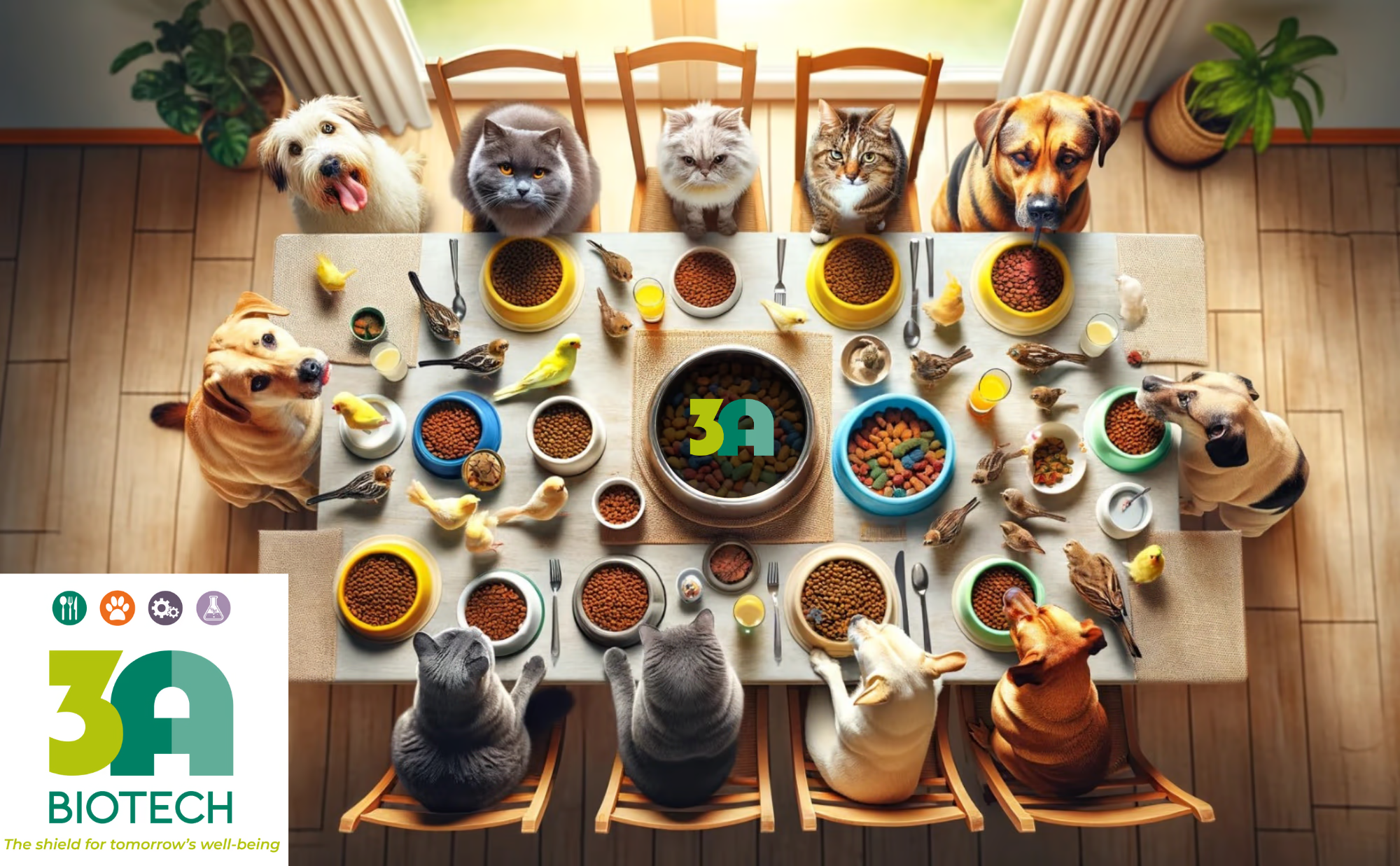 Preservatives
Preservatives
3+ MIN
28/08/2024
3R's - Reduce, recycle, reuse
1. Reduction of food waste Reducing food waste is a global challenge. According to the FAO (Food and Agriculture Organization of the United Nations), one-third of the food produced worldwide is wasted. In the European Union, around 59 million tonnes of food are wasted annually. At 3A BIOTECH, our production of natural antioxidants and preservatives, along with the evaluation of their synergy, allows us to REDUCE food waste by controlling the deterioration of animal feed products, thereby extending their shelf life. A significant portion of pet and livestock feed ingredients suffer from oxidation and microbial spoilage, reducing their availability and use. Increases in rancidity and microbial spoilage lead to greater wastes. We develop formulations of natural antioxidants (such as tocopherols, rosemary, olive, tea, among others) and preservatives (short and long-chain organic acids) that prolong shelf life, extending the expiry date by up to 70% or more, depending on the composition of the ingredients and the doses used. Through this strategy of REDUCING food waste by using antioxidants and preservatives, 3A BIOTECH aligns with the European Green Deal through the Circular Economy Action Plan and the Farm to Fork Strategy. 2. Recycling of By-Products The main activity of 3A BIOTECH includes the RECYCLING of by-products obtained from various production processes, including: Extraction of a natural extract rich in rosmarinic acid: from recycling a by-product generated during rosemary extraction. This natural extract has technological antioxidant properties to control feed rancidity and extend its shelf life, as well as biological antioxidant properties to prevent cellular damage. Antioxidants from olive by-products: especially from olive leaves, which have antioxidant and prebiotic properties, extending food shelf life and promoting bacterial balance. Tocopherols from vegetable oil by-products: recycled from deodorization distillated during vegetable oil refining, they are widely known as natural antioxidants in animal feed. Reuse of almond shells: used as a support in the formulation of natural antioxidants and preservatives. Animal and fish by-products: used in another recycling cycle for the production of meals, fats, and oils, where we apply our additives to ensure food preservation and safety. Our ability to recycle various industrial by-products and isolate antioxidant and preservative molecules is a hallmark of 3A BIOTECH's R&D Department. 3. Reuse of Food Ingredients Many antioxidants and preservatives are REUSED in different applications. Natural antioxidants, besides extending the shelf life of food ingredients, have other uses: Prebiotics: modulate the intestinal microbiota in animal and human nutrition. Biological antioxidants: protect against cellular damage. Technological adjuvants: control the Redox potential in fermentation processes and the drying of food colourants. Additionally, the by-products generated at our biotechnology plant at 3A BIOTECH are REUSED to design probiotic systems in animal feed. In this regard, the cellular biomass obtained from various biotechnological processes is reused due to its probiotic properties. 4. 3A BIOTECH's triple R Model This model makes us a company committed to and involved in the reduction of waste, recycling, and reuse of by-products, providing the animal feed industry with the economic and environmental sustainability, so essential in these times. At 3A BIOTECH, we contribute to making moments of quality, benefiting end consumers and minimising waste by extending the shelf life of food. Our goal is to maintain organoleptic properties and health benefits for longer, reflecting our effort to return the resources consumed to society and form an eco-sustainable production chain. By: 3A Biotech Source: All Pet Food Magazine
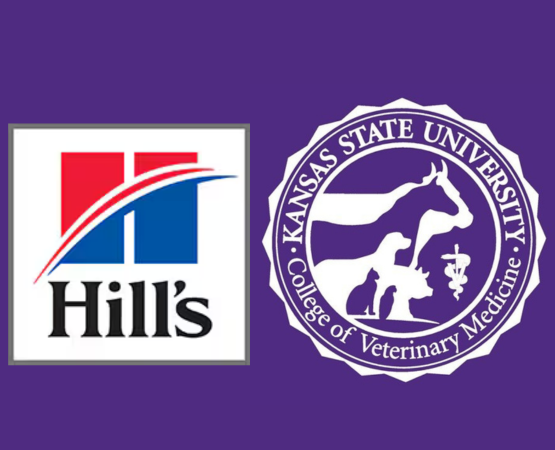 Sanity
Sanity
3+ MIN
27/08/2024
Hill's Pet Nutrition Invests in Kansas State University's College of Veterinary Medicine with $1 Million Endowed Clinical Nutrition Professorship
The professorship, officially named the Hill's Pet Nutrition Clinical Nutrition Professorship, is designed to enhance the educational experience of veterinary students and contribute to the advancement of veterinary nutritional science. This initiative underscores Hill's long-standing commitment to improving the health and well-being of pets through education, research, and practical application.
"The new endowed professorship builds on the legacy of an exemplary veterinary medicine program Kansas State University is already known for," said Dr. Jolle Kirpensteijn, Hill's global chief veterinary officer. "It's important that vet students receive comprehensive education in pet nutrition, which will be a critical aspect of promoting lifelong overall health in pets. We look forward to a continued partnership to create a future generation of veterinarians, fully knowledgeable and confident in making nutritional recommendations."
Enhancing Veterinary Education and Research
The Hill's Pet Nutrition Endowed Clinical Nutrition Professorship will significantly enhance the college's capacity to deliver cutting-edge education and conduct groundbreaking pet nutrition research. The appointed professor will be responsible for developing and teaching courses that cover all aspects of small animal nutrition, from basic dietary requirements to advanced therapeutic nutrition strategies.
In addition to teaching, the professor will lead research initiatives aimed at improving nutritional practices and developing new dietary solutions for common and complex health issues in small animals. This research will not only benefit the academic community but also have practical applications in veterinary practices around the world, ultimately improving the lives of countless pets.
"This professorship will enhance our educational capacity in small animal nutrition, strengthening the preparation of our graduates for success in any role they take in veterinary medicine," said Bonnie Rush, DVM, MS, DACVIM, Hodes family dean of the college. "We are grateful to Hill's Pet Nutrition for their generosity, support and vision for supporting veterinary medical education at Kansas State University. Our partnership has provided tangible several benefits for our students and for clients of the Hill's Pet Health and Nutrition Center in the Veterinary Health Center, and will continue to do so grow with the establishment of this new professorship."
A Legacy of Support and Collaboration
Hill's Pet Nutrition has a rich history of collaboration with Kansas State University's College of Veterinary Medicine. In 2018, Hill's contributed $2.4 million to establish the Pet Health and Nutrition Center, which serves as a primary care clinic within the College for the community and beyond.
"Hill's Pet Nutrition's investment in Kansas State University's College of Veterinary Medicine is a testament to the company's unwavering commitment to pet health and well-being," said John Hazlin, president and CEO of Hill's. "By supporting the education and development of future veterinarians, Hill's is helping to ensure that pets receive the best possible care throughout their lives."
About Hill's Pet Nutrition
Founded more than 75 years ago with an unwavering commitment to science-led pet nutrition, Hill's Pet Nutrition is on a mission to help enrich and lengthen the special relationships between people and their pets. Hill's is dedicated to pioneering research for dogs and cats using a scientific understanding of their specific needs. As a leading veterinarian recommended pet food brand, knowledge is our first ingredient with 220+ veterinarians, PhD nutritionists and food scientists working to develop breakthrough innovations in pet health. Hill's Prescription Diet therapeutic nutrition plus our everyday wellness product line, Hill's Science Diet, are sold at vet clinics and pet specialty retailers worldwide. For more information about our products and nutritional philosophy, visit HillsPet.com.
About Kansas State University College of Veterinary Medicine
The Kansas State University College of Veterinary Medicine, established in 1905, is dedicated to scholarship through innovation and excellence in teaching, research, and service to promote animal and human health for the public good. We are committed to creating an environment that is fulfilling and rewarding, being recognized for good communication, productive collaboration, mutual respect, diversity, integrity, and honesty. To carry out this mission, the college's nationally recognized instructional and research programs provide the highest standards of professional education.
Contact:
Ariana Brancato
[email protected]
Source: Hill's Pet Nutrition
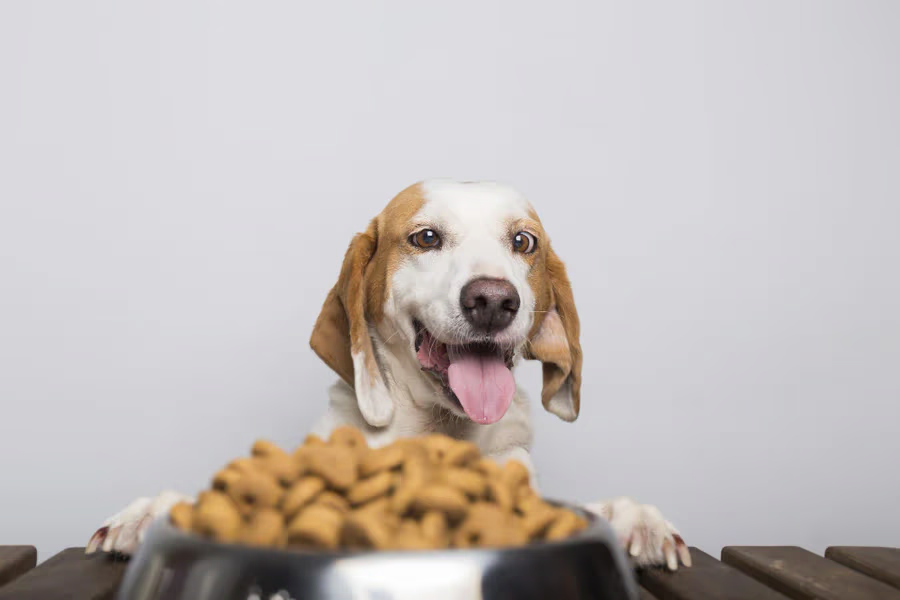 Formulation
Formulation
3+ MIN
23/08/2024
New study shows adding a prebiotic fiber blend to a puppy's diet supports growth and development and favorable digestive health
A healthy GI microbiome is essential for proper nutrient absorption, metabolism, and gut immunomodulation, which are crucial for the overall health and development of companion animals1,2. Probiotics, prebiotics, and postbiotics have all shown promising results in improving GI health in adult companion animals3,4,5. Given the importance of establishing a robust GI microbiome, researchers at Hill's Pet Nutrition have investigated the effects of a novel prebiotic blend on growing puppies in a recent study published in Frontiers in Veterinary Science6.
Prior research using this proprietary prebiotic blend resulted in positive effects on stool quality, pH, short-chain fatty acid (SCFA) production, and GI microbiome signatures in adult dogs and cats7,8. For the current study, 22 puppies between the ages of 4 and 10 months were fed a prefeed food for 2 weeks, then transitioned to the test food containing the prebiotic blend until they were 14 months old. The puppies showed normal growth and development throughout the study.
Much like the adult dog study, the puppies had marked improvements in key parameters of GI health. Stool quality was improved and fecal short-chain fatty acids (SCFAs) were increased. Fecal SCFAs are important for maintaining intestinal homeostasis and supporting gut barrier function, which are important for proper nutrient absorption and metabolism. The puppies also showed an increase in serum immunoglobulin A levels suggesting an improved immune response9. Interleukin-17 (IL-17), an inflammatory cytokine, concentration decreased linearly over time and interleukin-18 (IL-18) trended towards linear decrease, which may indicate a reduction in inflammation over the course of the study. IL-7 is associated with inflammatory diseases, such as inflammatory bowel disease10, while IL-18 has been associated with intestinal inflammation in mice11. While these results are promising, more work needs to be done to evaluate the effects of fiber consumption on inflammatory markers in puppies.
Overall, this research contributes to the understanding of nutritional science concerning the GI health of puppies. As one of the first studies examining the impact of a prebiotic blend in puppy nutrition, this research offers insights for creating diets that provide superior nutrition for developing companion animals.
By: Renea Creech Senior Specialist, Scientific Communications Hill's Pet Nutrition
Source: DVM 360º
References
Lyu Y, Su C, Verbrugghe A, Van de Wiele T, Martos Martinez-Caja A, Hesta M. Past, present, and future of gastrointestinal microbiota research in cats. Front Microbiol. (2020) 11:1661. doi: 10.3389/fmicb.2020.01661
Sarkar A, Yoo JY, Valeria Ozorio Dutra S, Morgan KH, Groer M. The association between early-life gut microbiota and long-term health and diseases. J Clin Med. (2021) 10:459. doi: 10.3390/jcm10030459
Wernimont SM, Radosevich J, Jackson MI, Ephraim E, Badri DV, MacLeay JM, et al. The effects of nutrition on the gastrointestinal microbiome of cats and dogs: impact on health and disease. Front Microbiol. (2020) 11:1266. doi: 10.3389/fmicb.2020.01266.
Pilla R, Suchodolski JS. The gut microbiome of dogs and cats, and the influence of diet. Vet Clin North Am Small Anim Pract. (2021) 51:605–21. doi: 10.1016/j. Cvsm.2021.01.002
Lee D, Goh TW, Kang MG, Choi HJ, Yeo SY, Yang J, et al. Perspectives and advances in probiotics and the gut microbiome in companion animals. J Anim Sci Technol. (2022) 64:197–217. doi: 10.5187/jast.2022.e8
McGrath, A. P., Motsinger, L. A., Brejda, J., & Hancock, L. (2024). Prebiotic fiber blend supports growth and development and favorable digestive health in puppies. Frontiers in Veterinary Science, 11, 1409394.
Fritsch DA, Jackson MI, Wernimont SM, Feld GK, Badri DV, Brejda JJ, et al. Adding a polyphenol-rich fiber bundle to food impacts the gastrointestinal microbiome and metabolome in dogs. Front Vet Sci. (2022) 9:1039032. doi: 10.3389/ fvets.2022.1039032
Wernimont SM, Fritsch DA, Schiefelbein HM, Brejda JJ, Gross KL. Food with specialized dietary fiber sources improves clinical outcomes in adult cats with constipation or diarrhea. FASEB J. (2020) 34:1. doi: 10.1096/fasebj.2020.34.s1.09918
Patel A, Jialal I. Biochemistry, immunoglobulin A In: StatPearls. Treasure Island, FL: StatPearls Publishing LLC (2024)
Willis CR, Seamons A, Maxwell J, Treuting PM, Nelson L, Chen G, et al. Interleukin-7 receptor blockade suppresses adaptive and innate inflammatory responses in experimental colitis. J Inflamm. (2012) 9:39. doi: 10.1186/1476-9255-9-39
Kanai T, Watanabe M, Okazawa A, Sato T, Yamazaki M, Okamoto S, et al. Macrophage-derived IL-18-mediated intestinal inflammation in the murine model of Crohn's disease. Gastroenterology. (2001) 121:875–88. doi: 10.1053/gast.2001.28021
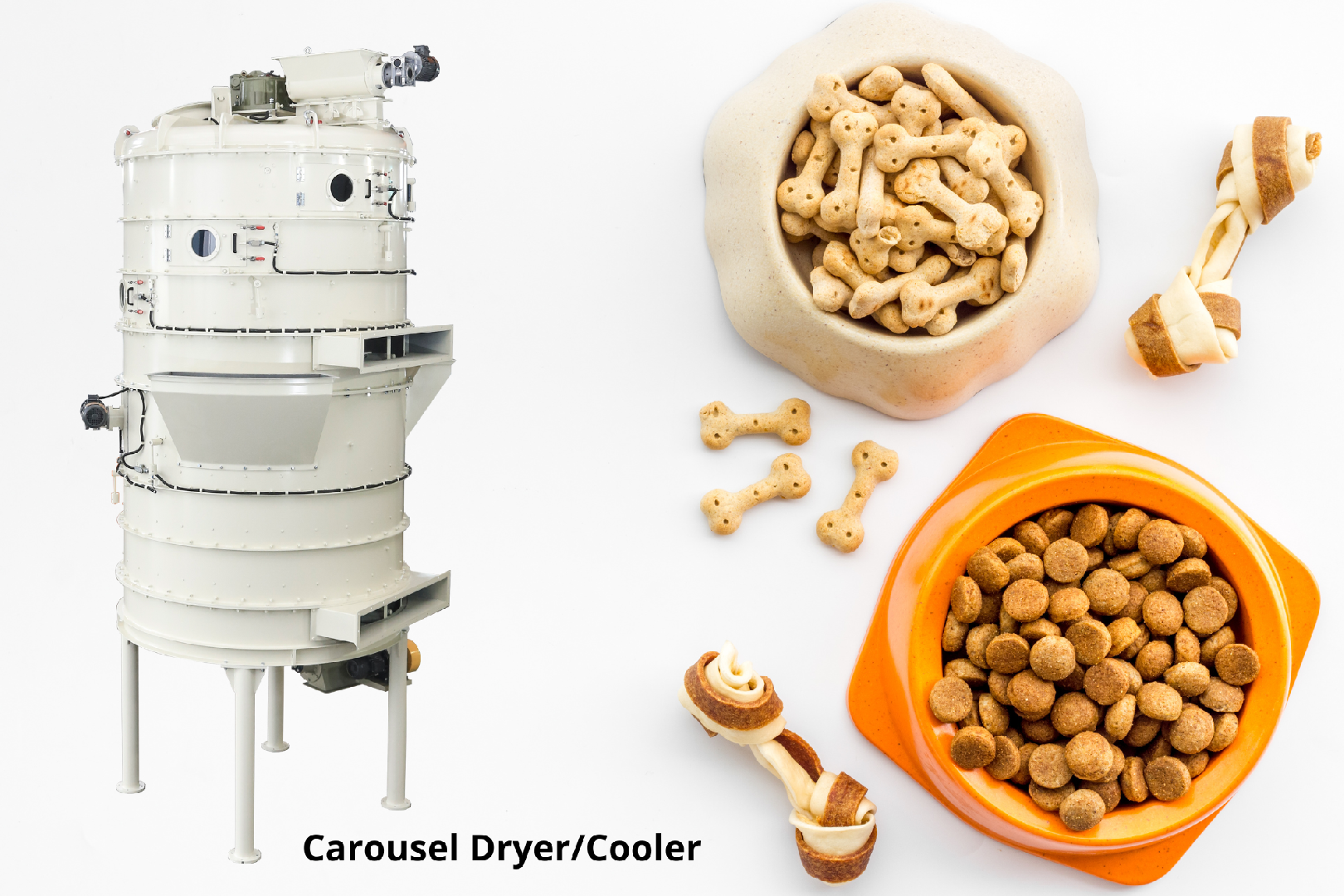 Drying
Drying
3+ MIN
21/08/2024
Carousel dryer/cooler from CPM's IDAH offers sustainability in petfood industry
The carousel working principle In the carousel dryer, the product enters through a rotary valve onto the revolving trays. The Carousel system ensures a first in, first out (FIFO) principle, after nearly one revolution, the product is gently discharged and mixed into the next lower tray. This process is repeated until the product drops from the last tray into the outlet where a rotary valve prevents air leakage. The revolution means that the product undergoes the same treatment all along the decks, ensuring that the product comes out in uniform moisture. Furthermore, the multiple tumbling action gives an efficient heat exchange with the air, resulting in a low dryer exhaust air temperature. Integrating dryer and cooler as one solution The Carousel technology is a unique solution for both energy efficiency and precise moisture control. Optimal moisture control is made easy by using carousel technology in both the dryer and cooler. Additionally, the exhaust air from the cooler can be directed as make-up air for the drying process. Therefore, an integration of the dryer and cooler into one compact machine with a FIFO discharge principle like the carousel dryer will give an outstanding moisture control performance. Ambient air cools the product and after filtered and heated it is used as drying air for the upper section. This carousel model offers many benefits and features when compared to traditional equipment. Improving product moisture control Managing the temperature and moisture content of the finished product is the main task for the drying and cooling process. However, when the feed is overdried, it causes material loss, as well as extra energy consumption. When the feed is too wet, the product will have a higher risk of quality degradation and mold growth. Due to its unique working principle, all the products in this carousel dryer will get the same heat treatment and retention time. This is combined with a unique and easy control system, along with real-time monitoring and modification of the drying parameters. The carousel dryer will give a uniform and constant moisture level that makes it easier to achieve the target average moisture, which will save energy and raw materials. Improving energy efficiency The drying and cooling process accounts for a significant part of the overall energy consumption. Rising energy costs and sustainability awareness regarding energy consumption have driven feed manufacturers to request further support to improve their drying and cooling functions. To maximize energy efficiency, we have to look into: Maximizing the use of warm product energy. Minimizing the amount of water evaporation. Minimizing energy loss with the exhaust air. By using the cooling air as makeup air into the dryer, the heat energy can be reused. Also, efficient heat exchange lowers the amount of exhaust air. Low exhaust air volumes will reduce the cost needed for odor treatment. Reducing the space required While upgrading the production capacity of a feed mill or improving the production process, the introduction of new equipment into the facility is required and space limitations may arise. The carousel dryer is already more compact than a typical dryer. Potential savings A direct result of using cooling air as makeup air for the dryer is savings. If you assume that the temperature differential between the ambient and cooler exhaust air is 25°C, you save up to 30 kg/t steam. At the same time, you will reduce the amount of exhaust air by 50%, reducing odor treatment costs significantly. Getting better moisture control, for example 0.5%, is saving not only about 10 kg/t steam consumption in the dryer but, even more importantly, saving 0.5% raw materials cost and having a 0.5% higher output capacity. For more information, contact [email protected]. Source: CPM IDAH
 Market Information
Market Information
1+ MIN
20/08/2024
South Korea: Dog food outpaces infant formula sales
Rising pet ownership and plummeting birth rates in South Korea are becoming more prominent by the year. Data from the e-commerce platform Gmarket reflects this change through shifting sales trends in pet food and baby formula products. Between January and May 2024, 7 out of 10 survey respondents purchased dog food (69%) and 31% baby food. So far, 2024 has marked the fourth consecutive year of dog food purchases outpacing infant formula in the East Asian country. According to the latest official data, there are 8 million pets in the country. Pre-pandemic vs. post-pandemic In 2019, as many as 59% of respondents bought baby food, followed by dog food (41%). In 2020, the split was almost equal, with 48% and 52% of sales, respectively. In 2021, and with the continuation of the pandemic, dog food sales increased to 61%. More than half of respondents (55%) bought dog food, and less than half (45%) bought baby food in 2023. Preference for dog food While it is worth noting that baby food is 3 times more expensive than dog food, the average buyer's unit price in the latter category is increasing significantly every year. Korean Statistical Information Service (KOSIS) notes a declining fertility rate from 0.92 people in 2019 to 0.78 people in 2022, leading to the premiumization of baby products and a surge in prices. According to Gmarket's data, the average unit price of baby food and infant formula increased 54% in the past 5 years, while dog food has increased 42% since 2019. Source: GlobalPets
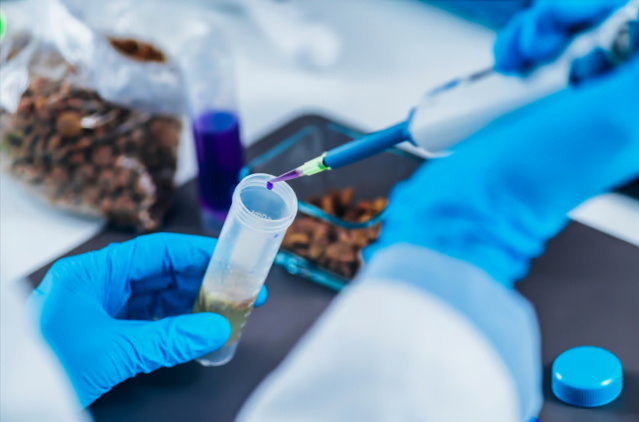 Market Information
Market Information
4+ MIN
16/08/2024
Factory: showcasing the manufacturing supply chain at Zoomark 2025
On May 5th–7th 2025, each component of the manufacturing supply chain will take centre stage at Zoomark 2025, the global B2B pet food and pet care show that brings together the pet industry and professionals in the sector from all over the world.
A special area among the various halls at BolognaFiere called Factory will provide businesses supplying the pet industry with a chance to strike new business deals at Zoomark.
Factory provides a golden opportunity for all companies in the supply chain. It will be the ideal platform for gaining new business, enjoying global visibility, and presenting innovative products and solutions to both manufacturers and an array of professional visitors in your precise target sector: purchasing managers, quality managers, formulators, R&D managers and production engineers.
Luisa Bersanetti, Exhibition Manager at Zoomark, explained: 'The Factory area will showcase the most innovative aspects of the supply chain, creating new business opportunities for industrial firms. The project targets tech leaders and pioneers in their sector: businesses that sell raw materials, key ingredients for food, premixes and semi-finished products, firms specialising in production and packaging equipment, packaging manufacturers, and all companies that provide cutting-edge logistics, industrial and distribution services, which play an increasingly important role in the pet market'. Bersanetti continued: 'For all these companies, Factory will be a perfect platform to engage with the dynamic and seemingly crisis-proof pet sector, which is valued at €7 billion and is recording double-digit growth every year. The industry is always open to innovation, is very welcoming of new businesses, and is constantly on the lookout for new suppliers'.
Raw materials and innovative ingredients at Factory
Consumers in the pet market are increasingly conscientious, demanding healthy and nutritious food and high-quality hygiene and cosmetic products for their pets, that are customised if possible and promote animal wellbeing and health. It is therefore essential that businesses in the market continue to innovate in their ingredients and raw materials.
As well as being a space for all these companies to present their work, Factory will also be dedicated to learning and discussion. As well as presenting products and services, businesses will be able to share their insight and expertise through seminars, workshops and panel discussions.
There will be a focus, for example, on natural, organic and sustainable ingredients, designed to enhance pets' wellbeing, and on alternative solutions, like the use of insect flours and plant proteins in pet food.
Increasingly sustainable and smart packaging in the spotlight
Packaging has a crucial role to play, both practically in keeping products in perfect condition (including helping to preserve pet food's nutritional value), and as a source of information for pet owners and a vital communication tool to draw consumers' attention to the quality of foods, cat litter and accessories.
Pet owners are conscious of packaging's environmental impact. According to recent research by Nomisma for Zoomark, sustainability is an increasing concern for Italian pet owners, with 46% of interviewees stating they will place a higher emphasis on aspects in this area in the next 2-3 years.
This increased sensitivity is encouraging manufacturers to explore more eco-friendly packaging and to provide consumers with innovative solutions. This is particularly true as of April 2024, when the European Parliament gave the green light to new regulations on packaging reuse and recycling that aim to drastically reduce waste by making packaging even more sustainable and recyclable.
Technology will undoubtedly play its part in adapting to the new requirements, with 'smart' packaging revolutionising the sector.
Factory will also provide the perfect platform for businesses from the world of packaging. It will be a place to launch new products, unveil innovative technology and reinforce their brand in the global pet sector or make a name for themselves in the industry.
Services for manufacturing companies
Businesses that offer distribution, logistics or other forms of services – management systems consultants, waste disposal or security, to name but three – will certainly not regret exhibiting in the Factory area at Zoomark. It could lead to significant growth and strengthen their position in a competitive global market.
For full details on exhibiting at Zoomark 2025 or to request further information on Factory from our admin team, click HERE.
See you at Zoomark 2025
Zoomark 2025 is set to be an unmissable event that caters for the specific needs of both exhibitors and visitors by focusing on their top priorities, helping to match supply and demand and offering ongoing training and collaboration.
Zoomark has always been much more than just a place to display products: it is the ideal location to get to know others, share ideas and develop new partnerships to grow your business.
The most successful formats from previous years will return in 2025, including the iconic Pet Vision space dedicated to the newest products, alongside special projects like the Factory area and a programme of fringe training and in-depth study events. Don't miss out!
Visit our website HERE.
Source: Zoomark
 Trends
Trends
4+ MIN
15/08/2024
Sustainable management at Kemin Nutrisurance: Reduce, recycle, reuse
At Kemin Nutrisurance, we are constantly committed to sustainability by adopting practices aligned with Sustainable Development Goals (SDGs), adopted by the United Nations, and implementing initiatives that seek circularity and align with the 3Rs. In the article, we will explore each principle, highlighting its importance and application in our company. Reducing: minimize waste Reducing waste is the base of our sustainability strategy. In 2023, we adopted various actions to minimize the amount of waste that ends up in landfills. Our guidelines to manage waste are in our Solid Waste Management Program which aligns with the current Ambiental law. These guidelines not only help to prevent soil, air, and water pollution but also an efficient management of resources. In June 2023, we began to allocate sludge from the effluent treatment plant, organic waste from the production process, and ashes from the kettle to a compost-specialized company. As in Figure 1, the process results in the production of a soil conditioner that gives added value to the waste. In 2023, these actions diverted over the 60% of waste that would end up in landfills, minimizing the need for new landfills and benefiting the soil. Figure 1: Picture of waste circularity Recycling: turn waste into resources Kemin Nutrisurance also stands out for its recycling area. In 2023, we raise awareness among our collaborators about the importance of recycling through awareness campaigns on waste and recycling. Our recyclable waste, such as plastic, paper, and craft from the packaging of raw materials and supplies are sent to a recycling plant. We have agreements with specialized companies to ensure the correct destiny and direction of recyclable waste. We developed the social program Proyecto Nuevos Caminos: Nutriendo el Mañana, visit the link https://info.kemin.com/pt-br/projeto-novos-caminhos for a better understanding. One of the bases of the program is to promote recycling, especially of plastic covers, and allocate financial resources to an institution that takes in children and teens in vulnerable situations. For two years, 2022 and 2023, we were recognized for this social responsibility initiative. In support of the program Proyecto Nuevos Caminos, we received the Empresa Ciudadana certificate and sign from the Public Ministry and State Court of Justice of Santa Catarina. Reusing: maximum exploitation of resources Reusing resources is essential to sustainability. In 2023, we opened up a new Effluent Treatment Station (ETS). This new structure, made with an activated sludge system, uses modern and efficient process. The new ETS multiplied by five the treatment capacity compared to the old one, generating better quality effluent. Thinking of the efficiency in the use of resources, we have an effluent reusing system and a fertigation system. After the treatment, the effluent is sent through a fertigation system to the agricultural land area. In this way, we reuse 100% of the treated effluent, promoting the resources reusing and contributing to the improvement of the soil and crops. SDGs 6 – Clean water and sanitation Our effluent management practices are aligned with the SDGs 6 that aim to improve water quality by 2030. We invested in a new Effluent Treatment Station in order to treat our industrial effluent, which entered into operation in 2023 compared to the old one. Besides using a treatment process that generates a better treated effluent, the current ETS has multiplied by five the treatment capacity. At the same time, it delivered maximum efficiency removing 99% of the concentration of biochemical oxygen demand (BOD). After the treatment, 100% of the effluent is reused in agricultural land areas through a fertigation system. SDGs 12 – Responsible consumption and production Reducing, recycling, and reusing are practices that align with SDGs 12 goal 12.5 that aim to substantially reduce waste generation by 2030. In 2023, we significantly reduce the delivery of waste to landfills, minimizing places for elimination, and adding value to the generated waste. As a result of our circularity initiatives, we also succeed in diverting 60,27% of landfill waste. SDGs 13 - Action to combat climate change In 2023, 100% of the consumed energy at Kemin Nutrisurance was clean and certified. It came from renewable sources and was bought at the electricity market, which is aligned with SDGs 13 goal 13.3, aiming for climate change mitigation. During the same year, we implemented a new kettle by biomass burning. Besides having higher levels of atmospheric emissions at environmental levels, it has the purpose of reducing liquefied petroleum gas (LPG) consumption. This improves atmospheric emissions rates and reduces fossil fuel consumption. Considering scope 1 and scope 2 emissions, our emissions were 6,692 t CO2eq and 4,371 t CO2eq by 2022 and 2023. Compared to 2022, we will reduce greenhouse gas (GHG) emissions by 34.7% in 2023. Our reducing, recycling, and reusing practices are integrated into each operation. We will continue innovating and implementing actions that promote sustainability, ensuring the reduction of our environmental impact and the responsible use of resources for a sustainable future. By: Kemin Nutrisurance Source: All Pet Food Magazine
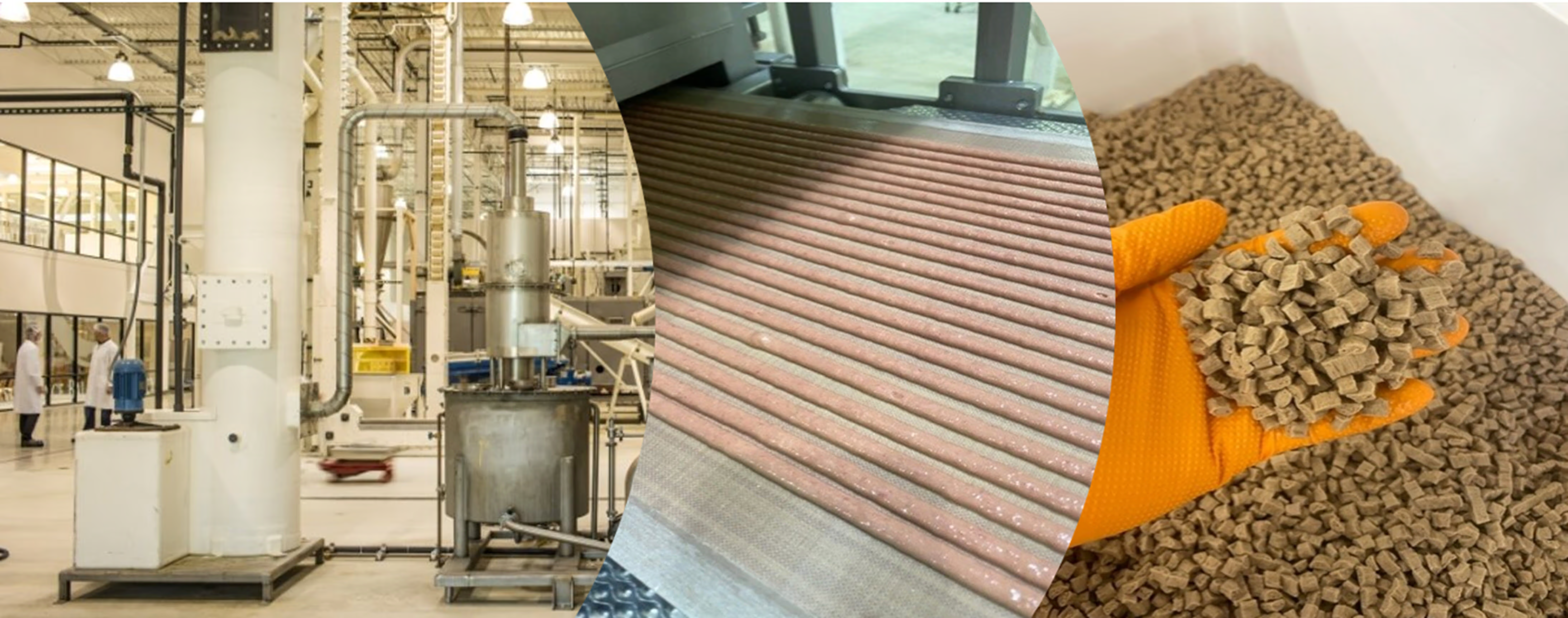 Wet food
Wet food
3+ MIN
14/08/2024
The effect of thermal processing on palatant performance in wet pet food
Overview Palatants designed for wet pet food applications face a unique challenge compared to palatants designed for kibble coating that is thermal processing. Wet pet food palatants may be exposed to one or more thermal processing steps, such as steam or retorting before being consumed. These thermal processing steps have the ability to alter a palatant's color, composition, and performance. Thermal processing of palatants also generates various organic compounds which can enhance the aroma of the formulations. During this study, we examined the effect of thermal processing on the: (a) color development, (b) compositional changes, (c) palatability, (d) the release of volatile organic compounds from eight different palatants. Experimental design A total of eight palatants were chosen, comprising two derived from fish proteins (WP1 & WP2), three from chicken proteins (WP3, WP4 & WP5), two from vegetable proteins (WP6 & WP7), and one from dairy proteins (WP8). The palatants were subjected to thermal processing for simulating the retort conditions used during the sterilization of wet pet food. Thereafter, the volatile organic compounds were analyzed to determine their variability. Fifteen cats were included in a two-bowl palatability test, with each bowl containing a raw mixture of meat and 1% inclusion of palatant (WP2, WP3, WP6, WP7 or WP8), heated in a pressurized retorting system (F0 value of 8). The control bowl was the same for all tests and it contained WP1 (palatant with fish protein). Each cat's first choice was recorded, and the intake ratio was calculated (in %). The differences in diet preference were tested using Friedmans two-way ANOVA. Results Figure 1 Thermal processing of wet pet food palatants may result in color change. Thermal processing can impact a palatant's color and composition. The extent of this impact on palatant color varies depending on the formulation of the palatant. Figure 1 shows that there may be great differences in color, such as WP6 (vegetable proteins) and WP8 (dairy proteins), and some may have so little that the difference is not even visible to the naked eye, WP1 (fish proteins). Figure 2 Thermal processing of wet food palatants may result in compositional change. The findings also revealed that WP8 (dairy proteins) and WP4 (chicken proteins) exhibit considerable differences in the compositions before and after thermal processing as seen in Figure 2. On the contrary, WP6 (vegetable proteins) and WP7 (vegetable proteins) show similarities before the reaction, but as the reaction progresses, they start developing in different directions. Figure 3 Palatability results of wet pet food palatants after thermal processing. Palatants WP2, WP3, WP6, WP7, and WP8 were chosen for palatability testing and volatile organic compound (VOC) analysis. The palatability results can be seen in Figure 3, revealing that WP6 (vegetable proteins) and WP7 (vegetable proteins) had significantly equal, WP8 had significantly lower, whereas WP2 (fish proteins) and WP3 (chicken proteins) had significantly better palatability compared to WP1 (fish proteins). Having identified which palatants have superior palatability after thermal processing; it was needed to determine which VOCs were generated and their relation to increased palatability. Eighty different VOC's were detected and used to group palatants that produced similar compounds under thermal processing. The grouping, as well as the results from palatability, was used to divide the palatants into two classes: premium and super-premium. This classification can be seen in Figure 4. It was noted that the palatants classified as premium contained higher concentrations of aldehydes, whereas the super-premium palatants had higher concentrations of sulfur containing compounds. Figure 4 Classification of wet pet food palatants according to VOC composition and palatability. Conclusion Thermal processing can impact a palatant's composition and color. This compositional change includes the generation of high concentrations of certain volatile organic compounds that enhance the flavor and palatability. High concentrations of sulfur containing compounds were noted in super-premium palatants and high concentrations aldehydes in premium palatants. AFB understands how thermal processing can impact the palatant's color, composition and palatability and is thereby able to produce wet pet food palatants that remain stable during thermal processing. For more information, contact your Account Representative or afbinternational.com/contact. By AFB International Source: All Pet Food Magazine
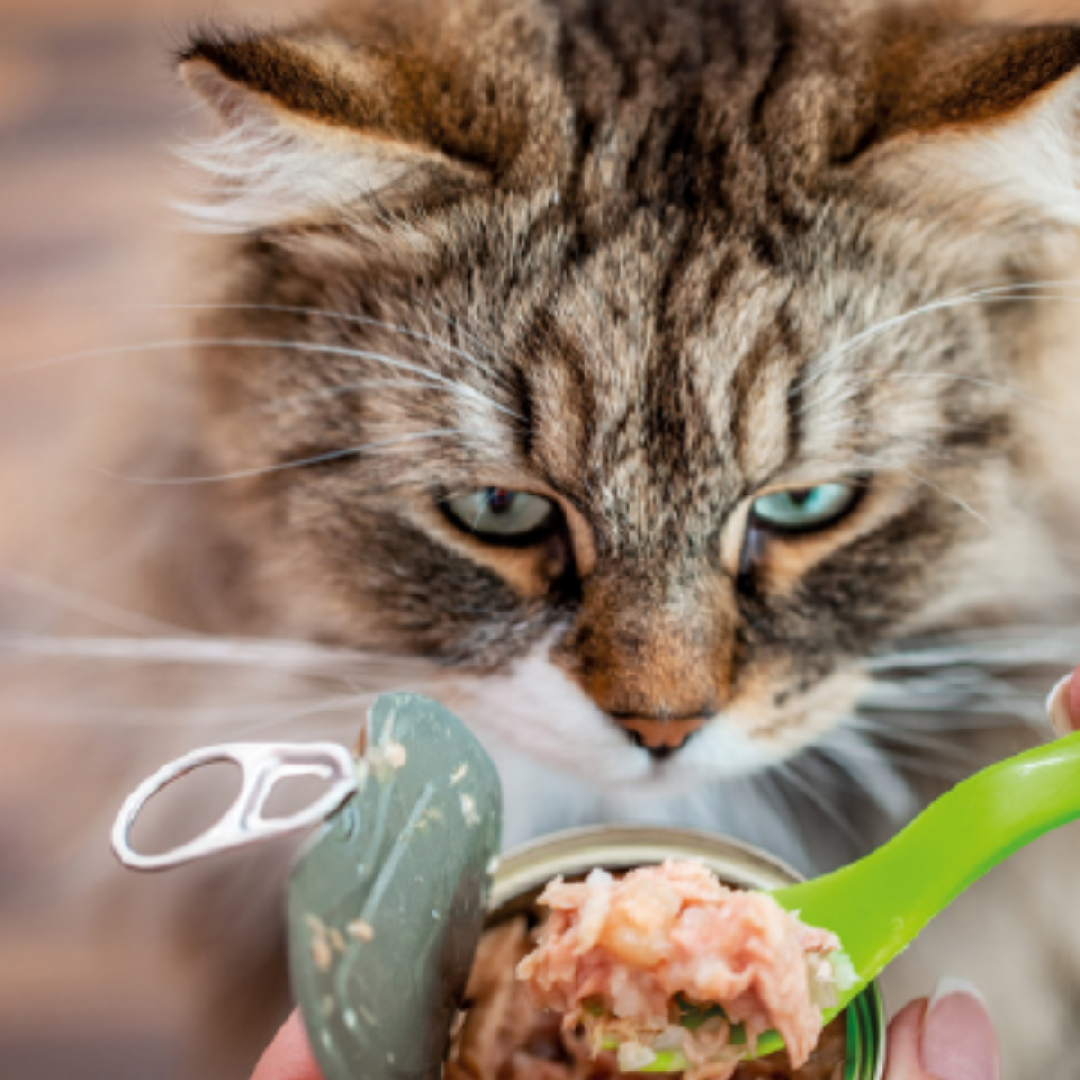 Wet food
Wet food
2+ MIN
12/08/2024
How wet pet food is made
Ingredient selection Many of the ingredients used in the manufacture of pet food are described as animal (or fish) derivatives or by-products. These ingredients are the parts of the animal surplus to the requirements of the human food industry. Examples of by-products include liver, kidney, lung and various byproduct meals. These ingredients come from species also most commonly found within the human food chain. In wet pet foods, by-products arrive at the factory in a fresh or frozen state. They may be chopped and added to the recipe mix directly or finely minced, mixed with dry ingredients such as cereals, formed into ribbons and diced into chunks of various sizes and shapes. Other ingredients are included such as oils and fats, vitamins, minerals, cereals, pasta, grains, or vegetables. Water is also frequently added as an ingredient to facilitate processing and to give the food its final form and texture. Ingredient weighing and preparation Ingredients are carefully selected according to a pet food manufacturer's specific recipe, which is formulated to deliver complete and balanced nutrition for cats and dogs and also to meet other requirements of the product such as the variety, age range or size range. Once the ingredients for a specific recipe are mixed they enter the can, pouch or tray. For some forms of wet food, a mix of water, thickening agents and flavours may be added to form a gravy or jelly during the cooking process. There are several different types, or formats, of manufactured pet food including wet (can, pouch, tray), dry (extruded or baked), cold pressed and raw. The label will indicate if the pet food is 'complete' or 'complementary'. 'Complete' means the product contains all the nutrients a pet needs for healthy bodily function in each daily ration, whilst a 'complementary' pet food e.g. treats will need to be fed along other sources of food to provide the right nutrition. The method of production and the ingredients used varies according to format. Sealing and cooking The can, pouch or tray is then sealed and enters a cooking process. The temperature and length of cooking, also laid down in the legislation, are carefully controlled in order to prevent spoilage over the shelf life of the product, as well as to optimise the taste and protect the required nutritional content. Cooling and labelling After cooking products are cooled. Cans are labelled. Information on tray and pouch products is usually printed upon the packaging itself. Storage and distribution Individual containers are packed into boxes or trays and stored in warehouses before being dispatched to customers. Pet food safety and quality Whatever the pet food format, all pet foods are subject to strict legislation to ensure safe, quality products. In addition to the legislation, FEDIAF members follow industry Codes of Practice such as the Guide to the Manufacture of Safe Pet Food. Source: FEDIAF
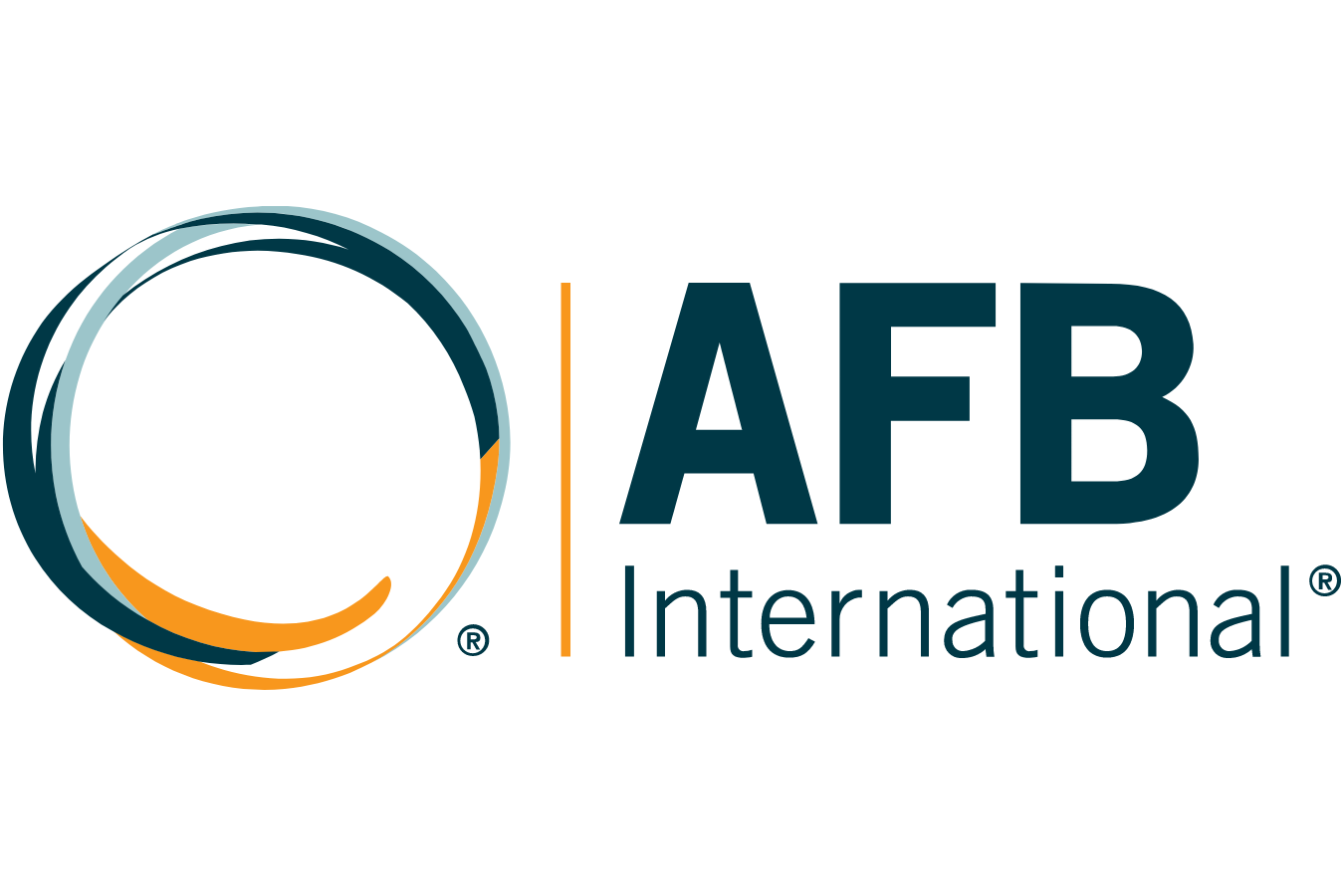 Market Information
Market Information
2+ MIN
09/08/2024
AFB International – News Release
'Over the past year as AFB Interim President, Dale has shown an unwavering passion for the business, genuine care for the wellbeing, engagement, and development of our people, and a strong commitment to our customers' success. Dale has formally and informally led many functional and general manager positions across AFB over eight years. These extensive experiences have effectively prepared him to lead the global business.', said Brad Ellis, President and CEO of Ensign-Bickford Industries, Inc. 'I am grateful for the trust Ensign-Bickford Industries and the AFB International team have placed in me. I am excited to continue the progress we have made over the last year expanding our footprint, improving our customer responsiveness, and invigorating our innovation engine. Our organizational structure enables closer customer collaboration with focused R&D intent. The characteristics that have set AFB apart… best-in-class customer service & support, solving customer problems, product quality, and being the trusted palatability partner… will continue to be pillars of our success. I look forward to meeting and working with more customers across our business.', said Dale. Dale joined AFB in 2016 as the Vice President of Strategy and Marketing, where he worked across all regions. Prior to joining AFB, Dale spent ten years at Gilbarco Veeder-Root, a Danaher Corporation subsidiary, where he held roles of increasing responsibility across multiple functional areas. Dale's early career was spent at Federal-Mogul and Caterpillar. Dale holds a Bachelor of Science degree in Mechanical Engineering and a Master of Science in Engineering Management from Missouri University of Science and Technology. About AFB International AFB International was founded in 1986 in St. Louis, Missouri, USA, with a vision to create the best palatants and make pet food taste great. Today, we are an international company with resource centers and production facilities designed to service pet food manufacturers worldwide. Our portfolio of palatants are formulated to deliver optimal performance for each customer's unique needs. About Ensign-Bickford Industries Ensign-Bickford Industries, Inc. (EBI), founded in 1836, is a privately owned high-technology conglomerate focused on space & defense, pet food science, and biotechnology. They participate in businesses relevant to the world's future and have multigenerational growth prospects. Source: AFB International
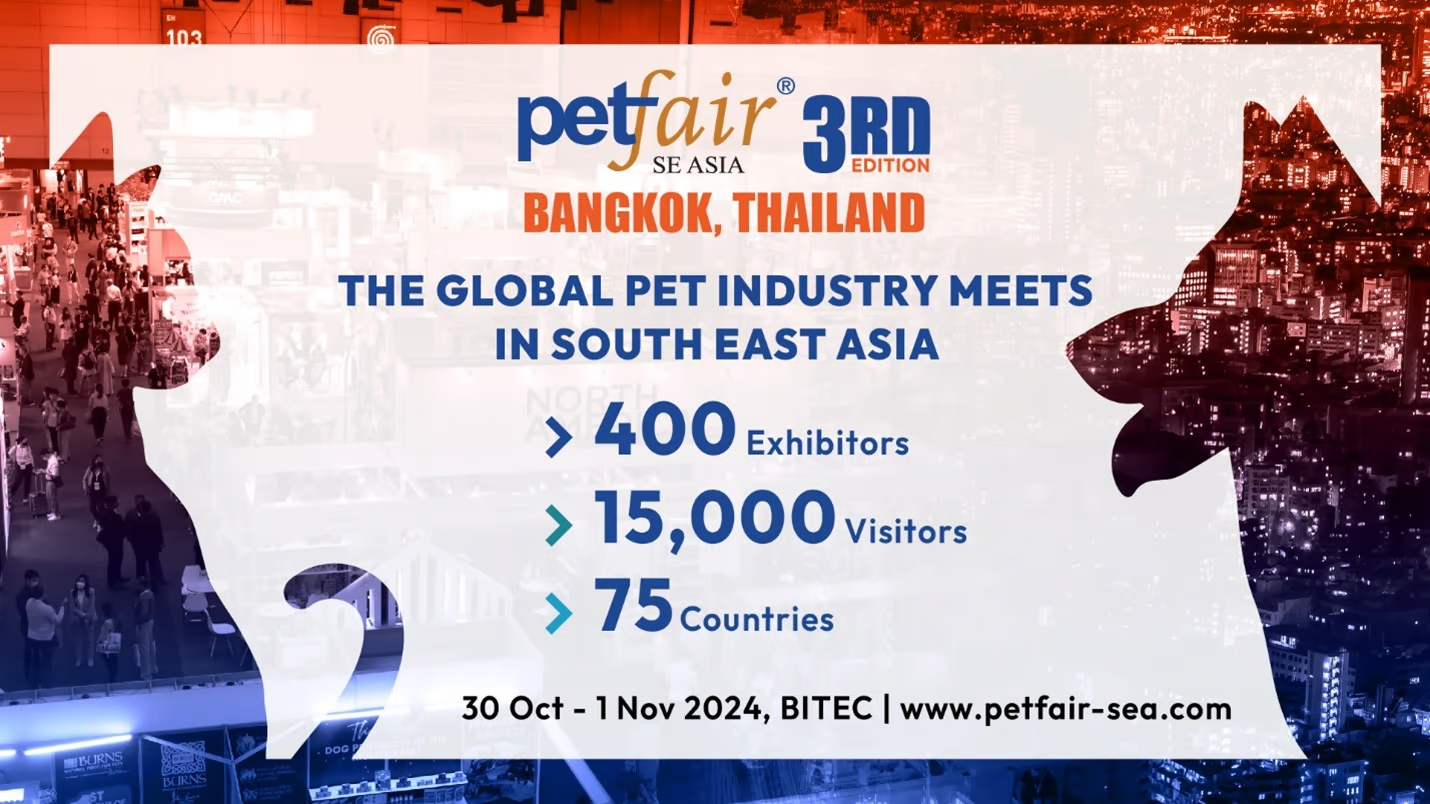 Market Information
Market Information
2+ MIN
08/08/2024
The Global Pet Industry Meets in Bangkok for an Unparalleled Exhibition Experience
Pet Fair South East Asia is a fully business-to-business trade show, providing the global pet industry with an international partnership hub for distribution, retail, and sourcing well beyond the ASEAN region. Located in Thailand's vibrant capital, Bangkok, the 2024 edition of the show will be held at the Bangkok International Trade and Exhibition Centre, spanning over 20,000 square meters of exhibition space.
Johannes C. Kraus from the organizer team states, 'We are looking forward to welcoming back the international pet industry to Bangkok at the end of October and providing an unparalleled industry experience for both exhibitors and visitors.'
Pet Fair South East Asia 2024 will feature 400 exhibitors from 45 countries, representing the entire pet industry value chain, including brands, OEM, ingredients, packaging, and machinery solutions. The 2024 show floor will also include dedicated country pavilions from the UK (by PetQuip), Italy (by Zoomark), Canada (by Pets Canada), USA (by IMEX), China (by Globus Events), Turkey, Japan, Korea, and Taiwan.
The global pet industry is meeting in South East Asia and invites you to be part of it.
Top reasons to participate include:
One-Stop Shop: Meet 400 exhibitors from over 45 countries.
Global Appeal: Share the show floor with 15,000 trade visitors from 75 countries.
Industry Experts: Attend 30+ insightful conference sessions.
Networking: Connect with old industry friends and forge new partnerships.
Thai Hospitality: Experience the world-famous Thai hospitality.
Show Teaser Movie: https://www.youtube.com/watch?v=67Cg_kU_fqo
More Info and Free Visitor Registration: www.petfair-sea.com
Source: Pet Fair South East Asia
 Micro Ingredients
Micro Ingredients
7+ MIN
07/08/2024
Functional properties of spray dried plasma (Part 4)
As previously mentioned, SDAP is an ingredient that presents high concentrations of essential amino acids and bioactive compounds, such as immunoglobulins, peptides, growth factors, enzymes, and metalloproteins. Due to its composition, this co-product also has an immunomodulatory, prebiotic, anti-inflammatory, and neuroprotective role. There is still limited research on its role in the health of dogs and cats. However, in other species, especially in pigs and rodents, and even in humans, its main demonstrated actions refer to prebiotic effects in the intestine, through the elimination of pathogens, modulation of the microbiome, improvement of mucosal integrity, and effects on immunomodulation (Pérez-Bosque et al., 2016). Part of the protective action of the SDAP is associated with the presence of IgG in its composition, which gives this ingredient an action of control in the population of pathogenic microorganisms and prevention of lesions on the intestinal mucosa. It was found that the ingestion of SDAP resulted in 5-10% of these biomolecules intact in dogs' feces, which suggests its action throughout the passage in the digestive tract (Rodriguez et al., 2007). In rats fed with diets containing 8% SDAP, an increase in microorganisms of the phylum Firmicutes was observed (Miró et al., 2007; Moretó et al., 2020), which are associated with the production of short-chain fatty acids, which helps maintain intestinal pH and regulate the growth of pathogenic microorganisms, with indirect effects on the intestinal immune tolerance of the animals. Some authors associate the microbiome modulating effect of the SDAP to the presence of immunoglobulins and other bioactive compounds present in its composition, or that can be produced from the digestion process of this ingredient. These compounds would be responsible for reducing the population of pathogenic microorganisms (Han et al., 2009; Balan et al., 2011). On the other hand, other researchers suggest a prebiotic effect, meaning that the action of SDAP would be related to its selectivity, with an increase in beneficial microorganisms and a consequent reduction in pathogens (Pérez-Bosque et al., 2008; Moretó et al., 2020). These mechanisms still need to be better investigated, but regardless of this, in piglets in the weaning phase, it is widely used for these effects, since it reduces the mortality rate of animals, the frequency of diarrhea and minimizes the effects of post-weaning stress, due to its intestinal and immunological effects. It is known that intestinal fermentative processes are directly related to the activation of the immune system and may lead to the induction of more inflammatory responses or, on the other hand, promote greater immune tolerance of the individual. This activation occurs by trans epithelial communication mechanisms in the gut, activated by microorganisms or fermentation products, causing a response cascade activated by several cytokines, which can activate more or less inflammatory responses. Figure 1 shows some cytokines and their effects on inflammation. Figure 1: Relationship of pro-inflammatory (black arrows) and anti-inflammatory (red arrows) cytokines. Some cytokines exhibit dual function, as can be seen. Original image published by de Subbarao (2021). In two studies in rats fed with 8% SDAP, the prebiotic and immunity effects of SDAP were evaluated (Miró et al., 2017; Moretó et al., 2020). In the first, the authors observed a reduction in pro-inflammatory cytokines, such as IL-2, IL-6, IL-7, and MCP-1, and an increase in the expression of anti-inflammatory cytokines, such as IL-10, in the intestinal mucosa (Miró et al., 2017). Already in the second study, the authors included 8% SDAP in the diet of rats and verified a prebiotic effect, characterized by increased populations of Lactobacillus spp. and Blautia spp. which are directly related to the production of short-chain fatty acids, accompanied by increased expression of immune tolerance markers of intestinal dendritic cells and macrophages, and also of the cytokines IL-10 and TGF-β, both related to greater immune tolerance. Similar results were also observed in fish and pigs by other authors (Tran et al., 2008; Tapia-Paniagua et al., 2020). In a recent study with healthy dogs, it was observed that feeding a 2% SDAP blend associated with prebiotics and probiotics had beneficial effects on fecal quality and immune function of the animals, with increased fecal IgA and CD4:CD8 T lymphocyte ratio in the group that consumed the blend. Modulation of the fecal microbiota has also been observed for some genera of the phylum Firmicutes spp. and other groups considered to produce short-chain fatty acids (Lee et al., 2022). The increase in IgA production is also related to the effects of additives having an effect on the gut microbiota, and a possible mechanism of activation of regulatory cytokines, such as IL-6 (a dual function cytokine), IL-10 and TGF-β. Because of the high protein value of SDAP and its effects on intestinal health and immunity, more recently, some studies investigating its activity in neuroprotection in senior individuals have been published. The aging process in humans and some animal species, such as dogs and cats, is similar, which is characterized by advancement in neurological degeneration processes and in a chronic subclinical inflammatory process, called inflammageing, which affects in a general way several systems of the organism and predisposes to chronic degenerative diseases. In a study conducted with mice predisposed to premature aging of the SAMP8 strain, it was observed that providing 8% SDAP was able to minimize the impacts of aging on the animals. In this study, SDAP contributed to the improvement of cognitive function, verified through short and long-term memory tests, in addition to the reduction of pro-inflammatory cytokines (TNF-α, IL-1β and IL-6, NFk-β), and the increase of IL-10, related to anti-inflammatory actions (Garcia-Just et al., 2020), in a similar manner to its gastrointestinal effects mentioned above. In this study, the authors further observed that the animals fed with SDAP showed higher concentration of adhesion molecules at the blood-brain barrier (ZO1 and E-cadherin), which are related to a greater protection of the nervous system from the permeability of macromolecules, which may accelerate the inflammageing process. Figure 2 shows the main results of this study. Figure 2: Results of including 8% SDAP in the diet of mice predisposed to premature aging (SAMP8) versus Control (CTL) group, at 2 (2M) and 6 (6M) of age, on cytokine gene expression (A) and short- and long-term memory tests (B). Results published by Garcia-Just et al. (The Journal of Nutrition, Volume 150, Issue 2, February 2020, Pages 303-311). Although there are few studies specifically in dogs and cats, investigating its functional properties on intestinal health markers, immunity and cognitive functions, in the scientific literature of the last 20 years, approximately 55 published studies are found, specifically with investigations of this ingredient on the responses mentioned above, mainly in pigs and rats, evidencing its effects. This way, due to its multifunctionality, SDAP has potential applications in pet food that have not been explored much, especially in extruded foods, which are the basis of more than 90% of pet food nowadays. To summarize the data presented in the 4 parts of this article published in Pet Food Brazil Magazine, in Figure 3, it can be verified, in summary, the different functions of the SDAP and the species studied so far. Figure 3: Effects of SDAP studied in different animal species. By Ricardo Souza Vasconcellos and Lucas Ben Fiuza Henríquez - APC Source: All Pet Food Magazine References: Balan, P., Han, K.S., Rutherfurd-Markwick, K., Singh, H., Moughan, P.J. Ovine serum immunoglobulin has immunomodu-latory effects in growing rats gavaged with Salmonella enteritidis. J Nutr. 2011, 141, 950-956. https://doi.org/10.3945/jn.110.131433. Balan, P., Staincliffe, M., Moughan, P.J. Effects of spray-dried animal plasma on the growth performance of weaned piglets—A review. J Anim Phys Anim Nutr 2021, 105, 699–714. https://doi.org/10.1111/jpn.13435. Garcia-Just, A., Miró, L., Pérez-Bosque, A., Amat, C., Polo, J., Pallàs, M., Griñán-Ferré, C., Moretó, M. Dietary spray-dried porcine plasma prevents cognitive decline in senescent mice and reduces neuroinflammation and oxidative stress. J Nutr 2020, 150, 303–311. https://doi.org/10.1093/jn/nxz239. Han, K.S., Boland, M., Singh, H., Moughan, P.J. The in vitro anti-pathogenic activity of immunoglobulin concentrates extracted from ovine blood. Applied Biochemistry and Biotechnology 2009, 157, 442–452. https://doi.org/10.1007/s12010-008-8352-7. Lee, A.H., Lin, C., Do, S., Oba, P.M., Belchik, S.E., Sstellman, A.J., Schauwecker, A., Swanson, K.S. Dietary supplementation with fiber, 'biotics,' and spray-dried plasma affects apparent total tract macronutrient digestibility and the fecal characteristics, fecal microbiota, and immune function of adult dogs. J Ani Sci 2022, 100, 1 -15. https://doi.org/10.1093/jas/skac048. Maijó, M., Miró, L., Polo, J., Campbell, J., Russell, L., Crenshaw, J., Weaver, E., Moretó, M., Pérez-Bosque, A. Dietary plasma proteins attenuate the innate immunity response in a mouse model of acute lung injury. Brit J Nutr 2012, 107, 867–875. doi:10.1017/S0007114511003655. Miró, L., Garcia-Just, A., Amat, C., Polo, J., Moretó, M., Pérez-Bosque, A. Dietary animal plasma proteins improve the intes-tinal immune response in senescent mice. Nutrients 2017, 9, 12. https://doi.org/10.3390/nu9121346. Moretó, M., Miró, L., Amat, C., Polo, J., Manichanh, C., Pérez-Bosque, A. Dietary supplementation with spray-dried porcine plasma has prebiotic effects on gut microbiota in mice. Scientific Reports 2020, 10, 1. https://doi.org/10.1038/s41598-020-59756-z. Pérez-Bosque, A., Polo, J., Torrallardona, D. Spray dried plasma as an alternative to antibiotics in piglet feeds, mode of action and biosafety. Porcine Health Management 2016, 2, 16. https://doi.org/10.1186/s40813-016-0034-1. Rodriguez, C., Blanch, F., Romano, V., Saborido, N., Rodenas, J., Polo, J. Porcine immunoglobulins survival in the intestinal tract of adult dogs and cats fed dry food kibbles containing spray-dried porcine plasma (SDPP) or porcine immunoglobulin concentrate (PIC). Anim Feed Sci Tech 2007, 139, 201–211. https://doi.org/10.1016/j.anifeedsci.2007.01.012. Tapia-Paniagua, S. T., Balebona, M.C., Firmino, J.P., Rodríguez, C., Polo, J.; Moriñogo, M.A., Gisbert, E. The effect of spray-dried porcine plasma on gilthead seabream (Sparus aurata) intestinal microbiota. Aquac. Nutr. 2020, 26, 801–811. Tran, H., Anderson, C. L., Bundy, J. W., Fernando, S. C., Miller, P. S., & Burkey, T. E. (2018). Effects of spray-dried porcine plasma on fecal microbiota in nursery pigs. Journal of Animal Science, 96, 1017–1031. https ://doi.org/10.1093/jas/skx034
 Trends
Trends
4+ MIN
06/08/2024
Por María Candelaria Carbajo
Cutting-edge technologies in plastic recycling
Technologies approved by the EFSA for recycling PET plastics The panel of the European Food Safety Authority considers various post-consumer PET and polyolefin recycling technologies optimal for use, a crucial factor in the EU since only packaging made from plastics recycled by processes approved by the EFSA can be used legally. Let's get to know some of the approved and most used technology processes for recycling PET plastics. Kreyenborg and his infrared approach Kreyenborg IR Clean+ technology for recycling post-consumer PET consists of heating and decontaminating PET flakes using a rotary infrared dryer under an air flow, up to a defined temperature. The flakes are then decontaminated in a finisher under airflow and high temperature. This process has been approved for the creation of thermoformed trays and cups to distribute beer, wine, coffee, juices, fruits, vegetables, desserts, meats, cooked and raw dairy products, drinking water, and carbonated beverages. Starlinger Technologies Starlinger, one of the leading recycling machinery companies, offers the deCON process. In this, the flakes are preheated in a batch reactor before being introduced into the solid-state polycondensation (SSP) reactor, which operates continuously under vacuum. The entire process is executed with specific parameters of temperature, pressure, gas flow, and residence time. Starlinger also introduces iV+ technology. In this process, the flakes are first pelletized, dried, and continuously crystallized in a reactor under airflow and high temperature. Subsequently, the flakes are introduced into an extruder at high temperature and under vacuum for some time, and the plastic is granulated. Then, the granules are crystallized at high temperatures in a continuous reactor under atmospheric pressure. Finally, the crystallized granules are preheated in a reactor before being transferred to a semi-continuous SSP reactor operating in a vacuum at high temperatures for a certain period. EREMA and its multiple processes EREMA's approved recycling technologies for PET are several. The EREMA Basic process consists of continuously feeding PET flakes into a reactor equipped with a rotating device, which operates in a vacuum at high temperatures. After a certain time in the reactor, they are continuously transported to an extruder, where they are melted. Finally, the product is filtered and pelletized. Another EREMA technology is MPR + DS, which consists of introducing flakes into a reactor equipped with a rotating device, which operates in a vacuum at high temperature and where, after a specific time, they crystallize. Then, they are introduced into a twin-screw extruder, to be melted and extruded into balls or sheets. EDEMA also has MPR technology, which covers the first part of the process detailed above, in which the flakes are processed in a reactor equipped with a rotating device. EREMA's Vacurema Prime is another of the approved processes. In this, the flakes are introduced into twin batch reactors, where they are heated for a certain time, possible contaminants are vaporized and the PET flakes are crystallized. The twin reactors then take turns moving the flakes to a continuous reactor in a constant back-and-forth process, where they are heated and decontaminated. Finally, they are transferred to an extruder, where they are melted and the melt is filtered before granulating the plastic. Closed-loop polyolefin recycling technology The panel also approved a process known as CAPEC, Boxes and Pallets in a Circular Economy. This involves recycling previously cleaned food-grade high-density polyethylene (HDPE) and polypropylene (PP) boxes into new boxes with up to 100% recycled content to store fruits and vegetables at room temperature or below. The recycling process is simple: sorted and clean boxes are crushed into flakes, washed with drinking water at room temperature, dried with a centrifuge, ground, and packaged in bags. Or, if the desired result is pellets, the cartons are crushed, washed with potable water at room temperature, dried with a centrifuge, ground extruded, filtered, and packaged in bags. The resulting flakes or granules may or may not be mixed with virgin HDPE or PP before the dye is added, and the plastic is injection molded into new boxes. BONUS: chemical technology can take PET recycling to another level In contrast to mechanical technology, we find chemistry, which, through innovative processes, offers a second chance to non-recyclable plastic waste, converting it into high-quality material for the chemical and food industries. In the case of PET, unlike single-use plastics, it is versatile and can be reused infinitely. It accounts for about 7.4% of all plastics and is widely used in food packaging materials, films, and fabric manufacturing. Chemical recycling is presented as a purer alternative that ensures that the containers made with this procedure are suitable for reuse for food packaging. Currently, only a small portion of PET is recycled, mostly transparent and colored bottles, due to limitations in the initial waste selection process. However, the ChemPET project proposes a solution with the implementation of chemical recycling. This technology breaks down plastic polymers back to their basic monomeric form and purifies them. It then returns it to the original polycondensation process, essentially replacing pristine fossil resources. That is, it transforms PET waste into a valuable resource to create a new virgin PET and achieves this by producing a stable and safe intermediate, known as BHET, which allows a new polymerization into PET. The resulting product, chemically recycled PET (crPET), matches the quality of virgin polymers and is even suitable for food-grade applications. Conclusion Certified circular plastics can be an important tool to help boost plastic waste recycling and improve plastic recycling rates locally and internationally. But, to achieve this, it is necessary to promote the development and access of various companies in the pet food industry to these types of procedures, optimizing costs and processes so that they can remain competitive in the market. Source: All Pet Food
 Interviews
Interviews
5+ MIN
05/08/2024
The interview - Scott Krebs, President of Wenger Group
Scott, tell us a little bit about your professional career and how you arrived and rose to your current position at Wenger Group. lived most of my life in Sabetha, Kansas, which has an incredible amount of industry professionals per capita. One of those industries in my hometown happens to be the Wenger Group. Because Sabetha is centrally located among many US pet food producers, I was aware of the pet food industry at a young age. always loved our companion animals and our family currently has three Australian shepherd-husky mix breeds that are truly part of my family. I obtained a mechanical engineering degree from Kansas State University and promptly returned to my hometown. I was an associate at Extru-Tech, Inc. for 32 years gaining knowledge in the various fields of project engineering, international sales, and brand management. I was honored to be appointed as President of Wenger Group in June 2023. How does your background in the pet food industry help you lead the Wenger Group? Process Solutions with emphasis on extrusion cooking, drying, coating, and cooling – especially for pet foods and treats – has been a passion for my entire 33-year career. Throughout that time, I've been fortunate to work with some incredibly knowledgeable extrusion cooking experts and some of the most forward-thinking and well-managed pet food producers in the world. From early in my career, I understood the importance of listening intently to understand customer needs, wants, and desires and collaboratively reaching solutions that meet their goals. Wenger's corporate focus is to provide customers with an 'unparalleled customer experience.' Although Wenger is a well-established and trusted name in the industry, we cannot be content with past success. Our customers face market and competitive challenges, and we must stay ready with updated solutions that can enable our customers to be successful. What do you think is the current main challenge among Latin American producers? see a growing opportunity in this region for foods and treats with higher levels of fresh meat content, unique inclusions, and increased palatability. Achieving these types of products requires a more advanced knowledge of extrusion cooking and drying. Our customers can enjoy first-mover advantages by working with nger to produce unique (and higher value) products for their market. Demand for traditional kibble will continue to be strong, but producers who can offer a wider range of foods and treats within a single flexible equipment architecture can be even more successful in Latin America. How can producers know whether to use twin-screw or single-screw extruders for pet food or treats? The answer to this starts with knowing the types of desired product characteristics (now and in the future). A single screw extruder is the workhorse in the industry around the globe. They are very effective for high volumes of established products while at the same time offering variability in recipe management. However, if a customer wants to create many different types of foods and treats - with at times even further ingredient and processing flexibility - from the same extruder, then we may suggest twin screw technology. The decision is not about which technology is better because both deliver on metrics all companies measure such as safety, performance, and quality, but rather about the selection of the correct tool to accomplish the customer's current and future states of their business model. It's also important to note that choosing the right holistic process solution (including drying, coating, cooling, and process controls) should be considered as an equally important decision to that of the extrusion system alone. For that reason, Wenger Group employs many process solution experts who were former customers utilizing extrusion technology. Our Process Group SMEs (subject matter experts) are equipped through education, experience, and frankly the 'school of hard knocks' that provide valuable insight into various available integrated process solutions. What new initiatives are the Wenger teams focused on? As part of our overall customer experience initiative, we are focused on technology innovation, manufacturing excellence, and expanding our process knowledge. We are designing and commercializing many offerings including the new PetFLEX™ extrusion system, improved control systems complemented with data analytics, and MES (Manufacturing Execution Systems) overlay for Wenger extruders and dryers. We also have decarbonization modifications for dryers including the use of high temperature heat pumps. In manufacturing, we are implementing processes to decrease lead times while enabling us to use newer, more sustainable materials. Wenger's reputation for extrusion process expertise is well deserved, but we stay diligent in understanding the changing demand for ingredients (including alternative proteins), palatability requirements, shapes, textures, and coatings. As we partner with customers, we try first to understand their needs, wants, and desires – and then we refine and/or recommend processes and hardware accordingly to meet and often exceed those expectations. How do you support customer Research & Development? Wenger customers (globally) are constantly developing new products to be successful. Enabling customer R&D has been core to our company for over 60 years, mostly through the Wenger Technical Center, located in Sabetha. For decades, producers of extruded pet food, aquatic feed, and human food have used the Technical Center to confidentially develop new product ideas in a facility with production-scale equipment. This is important because products developed in a small-scale test lab may not translate well into a full-size extrusion system. Plus, at the Technical Center, customers have access to the Wenger process team that can help with ingredient selection, process variables, extrusion parameters, and other critical aspects. We've been told numerous times that the Wenger team helped a customer achieve something they probably couldn't have done on their own at scale and speed to execution. As mentioned earlier, it is woven into our DNA to provide an 'Unparalleled Customer Experience' in all aspects of our business. We are a passionate, caring group that is honored to assist our customers! What market trends do you see emerging over the next 5 years? Globally, the trends for pet foods will include more variability in ingredient selection, breed-specific diets, increased palatability, increased nutrition, and treats with unique shapes, colors, and fills that all add to our companion animal's life-long well-being. Pet food producers – like most companies – also have sustainability initiatives and responsibilities that will demand technology solutions that reduce energy usage and are carbon-smart. Processing flexibility & agility will be paramount. Customers want to produce multiple products, with unique ingredients, on the same equipment, and with the same set-up, if possible, to optimize uptime. In other words, producers will increase their product offerings while decreasing production costs. Here at the Wenger Group, we embrace the challenge, and we look forward to working with our customers on these opportunities. Source: All Pet Food Magazine
 Animal Origin
Animal Origin
2+ MIN
02/08/2024
Category 3 Animal Fat - an important Pet Food Ingredient
Animal by-products (ABPs) Animal by-products (ABPs) are materials of animal origin that people do not consume. When they do not enter the human food chain, in Europe, animal by-products are classified into three categories: Category 1, Category 2 and Category 3 depending on the source of the raw material and the intended use[i]. The pet food industry can only use Category 3 ABPs. Category 3 ABPs are from animals declared fit for human consumption. These are ideal pet food ingredients due to their high nutritional and energetic value and should be used in the best possible way to preserve resources. Category 1 and 2 animal fats are forbidden for animal feeding for safety reasons but allowed for biofuel production. The Vital role of Category 3 animal fats in Pet Food Category 3 animal fats are essential raw materials for our pets' diets. They provide a source of energy and palatability but above all essential fatty acids. They are subject to strict requirements on sourcing and collecting, animal origin materials processing, and control. Category 3 animal fats cannot be easily replaced as a pet food ingredient. The EU & The Pet Food Industry's Waste Hierarchy FEDIAF firmly believes that food, such as Category 3 animal fats, which is not intended for human consumption, should be repurposed according to the food waste hierarchy, i.e.: pet food (re-use animal feed) rather than energy (recovery) as indicated below[ii]. This sits well above energy use in the EU's own hierarchy of most-preferable options for food waste disposal. The Pet Food Industry and the Future Unfortunately, there is increasing pressure due to Category 3 animal fats being used in other sectors such as biofuels, which are much lower in terms of waste hierarchy. The Pet Food Industry will continue to communicate the importance of Category 3 animal fats in pet food. They are vital ingredients, which contribute to our circular business model and they cannot easily be replaced. Source: FEDIAF
 Trends
Trends
5+ MIN
31/07/2024
Por María Candelaria Carbajo
Rendering in pet food: a path towards sustainability
Various studies affirm that meat-based diets are not sustainable, and the truth is that today, most pets eat a carnivorous diet (or based on products made with meat). Facing with this problem, the pet food industry seems to be one of the most involved since statistics and studies carried out worldwide indicate that croquettes, the most chosen food for dogs and cats, are made, in a higher percentage, based on meat, a highly influential factor in positioning the market as the consumer of ⅓ of the meat that humans consume (considering that animals consume ⅕ of what we do). Since dealing with this situation, the rendering process has been growing increasingly as an alternative to reduce the footprint and pollution produced by the pet food industry, seeking to transform animal by-products into useful and quality ingredients. What is rendering? Rendering is known as the industrial process that seeks to treat animal by-products to reuse them since, otherwise, they would be discarded. Through their heat treatment and physical transformation that destroys pathogens, removes moisture, separates solids and lipids or fats/oils, and more, rendering transforms inedible meat products into usable materials such as fuel, pet food, and livestock feed, creating a highly sustainable alternative. Its importance for challenging environmental impact In the United States, for example, rendering is vital, since around 50% of an animal is inedible (NARA, 2020). With rendering, instead of wasting this material, it is recovered and reused to obtain oil, fat, protein products, and even for the production of other industries, such as beauty or fuel. This is how widespread the use of products obtained by rendering is: not only are they nutritionally fed to livestock, pigs, chickens, and other animals, but they also offer sustainable alternatives for trucks, trains, cars, and ship mobility. Rendering: benefits and impact This process allows huge volumes of meat scraps and other meat waste to be kept out of landfills, reducing carbon emissions, greenhouse gasses, food waste, and more. Broadly speaking, rendering contributes to the three sustainability pillars: Environment Recovering meat and animal carcass scraps that would otherwise be discarded, rendering reduces the food production footprint, saves landfill space, and helps minimize the environmental impacts of the livestock industry. On the other hand, it contributes to water recovery, since it recuperates and cleans valuable water that, if not for rendering, would contribute to byproduct decomposition and cause water contamination. Additionally, rendering evaporates moisture from raw materials and processes all runoff and wash water for specific treatments. Society By recovering and transforming animal remains into new, sellable products, rendering impacts market products and, consequently, consumption. At the same time, it creates stable jobs, many of them in rural areas, due to the location needs of this type of factories, counteracting city gentrification. Furthermore, this must happen in areas close to meat processing factories, since, due to the perishable nature of these products, they cannot be transported long distances or exported, directly impacting local job creation. Economy Rendering can improve the industry economy, but also, and mainly, the local economic context and the people who are impacted by the creation of these jobs previously mentioned. What does a rendering process consist of? Heat treatment and physical transformation: Animal by-products are subjected to heat treatment, usually through cooking or boiling processes to break down animal tissues and begin the transformation process. Destroying pathogens: Through high temperatures used in processing, pathogens present in the products are eliminated. Moisture removal: Moisture is removed from animal by-products to increase the shelf life of processed products. Separation of solids and lipids/fats/oils: During processing, the mixture is separated into several components. Solids, including proteins and minerals, are separated from lipids, fats and oils to continue the production of various products. Rendering products: examples Meat and bone flavor: It is used to produce food for birds, pets, and livestock for its amino acid profile as an organic fertilizer due to its high concentration of nitrogen, calcium, and phosphorus. This flour is an alternative renewable energy source, due to its high caloric content and can be made from beef, poultry, or fish meat, for example. Blood: This can be from cows or pigs, for example, and can be dried whole or separated into blood meal or plasma products. Blood meal is a dry powder used in aquaculture, poultry, and piglet feeding, and as an organic fertilizer, due to its high protein and nitrogen content. Cattle blood collection occurs after the edible parts are separated, dried, and turned into blood flour. This facilitates product incorporation into animal diets. The high protein content is ideal for livestock-fed plant by-products, forages, and cereal diets. Plasma: Plasma is a highly functional protein ingredient obtained from blood and can be used in the production of animal and pet feed to improve digestion, breathing, and reproduction. This is only one blood component and excludes others, such as red blood cells. Tallow: Tallow is cattle-solidified and processed fat. It is used to remove impurities. Beef tallow, for example, at room temperature, has a waxy texture similar to coconut oil or lard. In addition, it can be stored without refrigeration in airtight containers for several months without spoiling. It is ideal for biofuel production, a renewable, clean-burning diesel fuel substitute; manufacturing livestock and poultry feed and pet food, and producing soap. Tallow acids can also be used in a variety of products. Feather flavor: It is a by-product of poultry processing, which is made by hydrolyzing feathers at high temperatures and pressure to sterilize them, then grinding and drying them. It is a valuable source of protein and an ingredient for poultry, aquaculture, livestock feed, and pet food. Conclusion The rendering industry gives value to animal parts that are not normally used for human consumption by processing them into ingredients for pet food. Its sustainability benefits are clear and can be precisely analyzed, and that is why the rendering industry is increasingly dynamic and constantly changing. Year after year, new approaches and initiatives emerge, because both the environment and consumers seek to choose products committed to reducing the carbon footprint of their choices. Faced with this demand, rendering is presented as a highly valuable alternative to find a new life for those ingredients and raw materials that, until now, were discarded. Source: All Pet Food
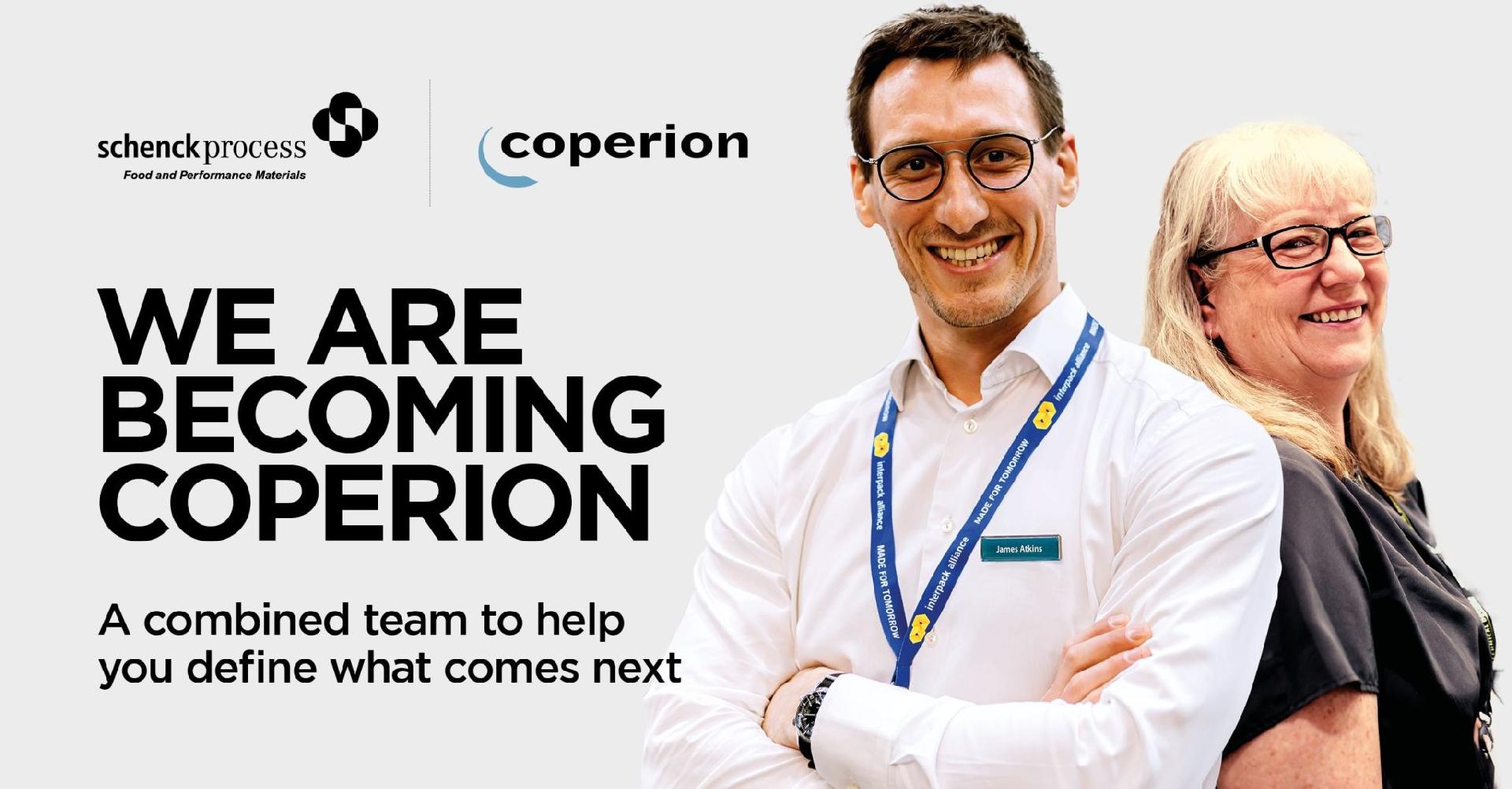 Market Information
Market Information
2+ MIN
29/07/2024
Schenck Process FPM is becoming Coperion
For decades, our industry experts have made our solutions perform the best for your processes. Together as Coperion, we will bring you more resources and unmatched technologies – from a combined team with the knowledge and experience to help you define what comes next. The world's best process technology brands from one source Under the Coperion banner, we're combining the flagship Schenck Process FPM brands you know and trust—such as Raymond Bartlett Snow, Stock, Baker Perkins, Kemutec and Mucon—with the proven technology brands of Coperion. It's a broader, deeper portfolio that's going to enhance our ability to deliver the end-to-end process solutions we're known for around the world. An overview of Coperion and its many proven technology brands Qlar – formerly the Schenck Process Group, is not part of this Schenck Process FPM transition When Hillenbrand purchased Schenck Process Food and Performance Materials (FPM) in September 2023, we joined together our global food expertise and U.S.-focused performance materials expertise. While Qlar's rebrand coincides with the timing of our rebrand to Coperion, they are unrelated. Our name is changing. We are not. Transitioning to the Coperion brand doesn't mean we're going away. Far from it—we are focused on leveraging new opportunities across our portfolio to deliver end-to-end solutions that meet your needs. The same expertise, support, service and hands-on approach you've come to expect from us will continue. If you're an existing customer, you can look forward to continued partnership with the team you know. If you're looking for a process solution provider, now you've got more reason to work with us. Source: Coperion
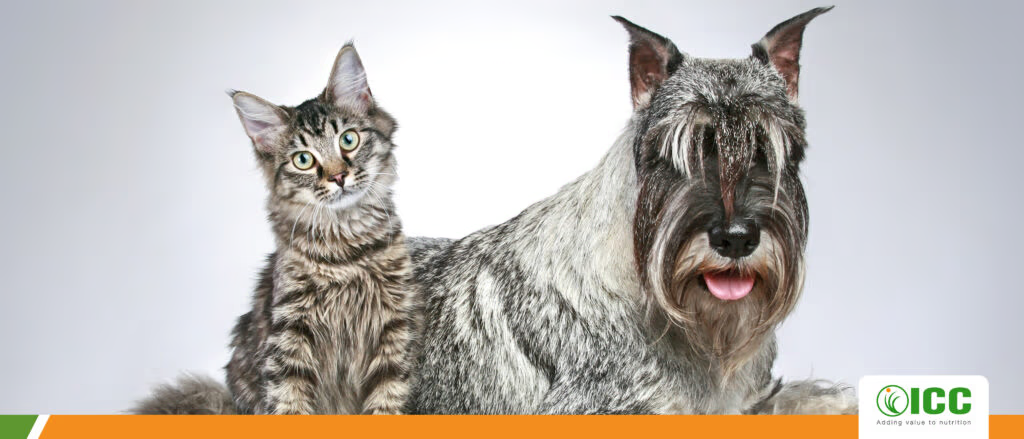 Formulation
Formulation
5+ MIN
29/07/2024
β-Glucans and MOS in Pet Food: Origin, Properties, Benefits
Yeast-Based Ingredients in Pet Foods Yeast-based ingredients derived from ethanol production have been widely used in pet foods for decades, mainly as a source of protein and other nutrients (such as B-complex vitamins) and as a palatability enhancer. However, yeast has typical components in its structure that make up the cell wall: β-glucans and mannan-oligosaccharides (MOS). The concentration and availability of these carbohydrates vary according to the type of yeast (Saccharomyces cerevisiae or others) and the fermentation process (brewers, bakers, molasses, distillers' grains, etc.), as well as the following technologies applied to obtain different final products (inactive dry, autolyzed, hydrolyzed, etc.). β-Glucans The β-glucans in the yeast cell wall are β-1,3 and 1,6-glucans, different from those found in cereals (such as oats, bran, and others), which are β-1,4 and 1,3-glucans. This physicochemical difference will affect their biological function because branched or linear β-1,4-glucans have limited activity (major proportion in plant cells), while β-1,3-glucans with additional branching have the greatest immunomodulatory effect (PETRAVIĆ-TOMINAC et al., 2010). Thus, the β-glucans in the cell wall of Saccharomyces cerevisiae consist mainly of β-1,3-glucans linked in a central backbone with β-1,6-glucan branches of varying sizes (PETRAVIĆ-TOMINAC et al., 2010), which in turn are linked to manno-proteins, serving as an anchor for the structure and integrity of the manno-protein layer (MAGNANI & CASTRO-GÓMEZ, 2008). MOS The mannan-glucan complex will maintain the primary stability of MOS as it is and its insolubility in water. This is crucial for its biological function in the animal's gut. The main known mode of action of MOS is to serve as a binding site for pathogenic bacteria, preventing their adhesion to the intestinal epithelium and subsequent colonization and infection (MORAN, 2004). Bacteria such as Salmonella and E. coli use type 1 fimbriae, a mannose-specific lectin, to recognize glycoproteins on the surface of enterocytes (MORAN, 2004). Thus, this mechanism controls and reduces the bacterial enteric load and infection. MOS is widely referred to and classified as a prebiotic in the literature; however, it may be possibly misunderstood, as the definition of a prebiotic is 'a non-digestible food ingredient that beneficially affects the host by selectively stimulating the growth and/or activity of one or a limited number of bacteria in the colon and thus improves host health' (definition by Glenn & Roberfroid, 1995). Subsequently, the concept was updated by the International Scientific Association of Probiotics and Prebiotics (ISAPP) as: 'a selectively fermented ingredient that results in specific changes in the composition and/or activity of the gastrointestinal microbiota, thereby conferring health benefit(s) to the host.' According to ISAPP, the most studied and used prebiotics are inulin, fructooligosaccharides (FOS), galactooligosaccharides (GOS), and more recently, human milk oligosaccharides (HMOs). Benefits of Pet Food Studies on dogs in the literature have reported the benefits of MOS supplementation related to changes in the gut microbiota (significantly increasing beneficial bacteria and decreasing pathogenic bacteria), digestive system (intestinal integrity, reduced fecal odor, and improved stool quality), modulation of immune system responses (phagocytic activity, interleukins, immunoglobulins), among others (SWANSON et al., 2002; GRIESHOP et al., 2004; MIDDELBOS et al., 2007; PAWAR et al., 2017; THEODORO et al., 2019). However, many studies report the use of a yeast cell wall product (a combination of β-glucans and MOS) or do not fully clarify the composition of the MOS product used. This could lead to a misinterpretation of the mode of action and benefits of MOS vs. β-glucans. The body does not synthesize β-glucans, so they must be recognized by the immune system, inducing immune responses (PETRAVIĆ-TOMINAC et al., 2010), known as immunomodulators. The process begins with recognition by phagocytic cells (macrophages, monocytes, dendritic cells, neutrophils, natural killers) with a toll-like receptor on their cell surface, which recognizes microbial patterns and induces an immediate innate immune response. The structure that allows recognition by the immune system is the pathogen-associated molecular patterns (PAMPs), and among the best known are β-glucans, which trigger responses to protect the host against pathogen invasion, characterizing innate immunity (MAGNANI & CASTRO-GÓMEZ, 2008). After this activation and phagocytosis, the phagocyte presents a processed antigen fragment. It stimulates a chain response by releasing pro-inflammatory cytokines and activating the production, release, and mobilization of additional phagocytic cells (produced in the bone marrow) (PETRAVIĆ-TOMINAC et al., 2010), phagocytic activity, and other cell-mediated immune responses. This immunomodulatory effect means training the innate immune system and preparing it for a faster, better, and smarter response to challenges (PETRAVIĆ-TOMINAC et al., 2010). The practical result is reducing the inflammatory process (costing less to metabolism), controlling infections and their consequences (oxidative stress, cell damage, etc.), and improving the production of immunoglobulins and antibodies (against specific pathogens/antigens or vaccine titers). Several purified and concentrated β-glucan products are available, and their immunomodulatory effect has been proven over the years, as well as when β-glucans are complexed with MOS in the yeast cell wall. These benefits seem essential for puppies (due to the developmental stage of the immune system and intestinal tract, as well as the intense vaccination period), elderly animals (due to the susceptibility of the immune system at advanced ages), animals with intestinal problems, or diseases that can cause a depression in immune response. Conclusion MOS and β-glucans are key components of yeast products. Their composition, concentration, and availability are closely related to the type of yeast they come from. MOS and β-glucans benefit pet food diets due to their interesting properties for balancing microbiota, preserving intestinal health, and modulating the immune response. Having a deeper understanding of these key properties helps to better appreciate them in pet food applications and allows for their tailored use to address specific challenges that companion animals face, such as growth, reproduction, and recovery. Source: ICC Animal Nutrition References Grieshop, C.M, et al. Gastrointestinal and immunological responses of senior dogs to chicory and mannan-oligosaccharides. Arch Anim Nutr. 2004 Dec;58(6):483-93. doi: 0.1080/00039420400019977. International Scientific Association of Probiotics and Prebiotics (ISAPP). Consulted on September 19th, 2023. https://isappscience.org/for-scientists/resources/prebiotics/ Magnani, M. & Castro-Gómez, R.J.H. β-glucans from Saccharomyces cerevisiae: constitution, bioactivity and obtaining. Semina: Ciências Agrárias, Londrina, v. 29, n.3, p. 631-650, jul./set. 2008. Middelbos, I.S. et al. A dose-response evaluation of spray-dried yeast cell wall supplementation of diets fed to adult dogs: effects on nutrient digestibility, immune indices, and fecal microbial populations. J Anim Sci. 2007 Nov;85(11):3022-32. doi: 10.2527/jas.2007-0079. Moran, C.A. Functional components of the cell wall of Saccharomyces cerevisiae: applications for yeast glucan and mannan. In book: Nutritional biotechnology in the feed and food industries, Nottingham University Press, pp.283-296, 2004. Pawar, M.M. et al. Effect of dietary mannanoligosaccharide supplementation on nutrient digestibility, hindgut fermentation, immune response and antioxidant indices in dogs. J Anim Sci Technol. 2017 May 11;59:11. doi: 10.1186/s40781-017-0136-6. Petravić-Tominac, V. et al. Biological effects of yeast β-glucans. Agriculturae Conspectus Scientificus, n. 75, v. 4, 2010. Swanson, K.S. et al. Supplemental Fructooligosaccharides and Mannanoligosaccharides Influence Immune Function, Ileal and Total Tract Nutrient Digestibilities, Microbial Populations and Concentrations of Protein Catabolites in the Large Bowel of Dogs. J Nutr. 2002 May;132(5):980-9. doi: 10.1093/jn/132.5.980. Theodoro, S.S. et al. Effects of the solubility of yeast cell wall preparations on their potential prebiotic properties in dogs, PLoS ONE 14(11):
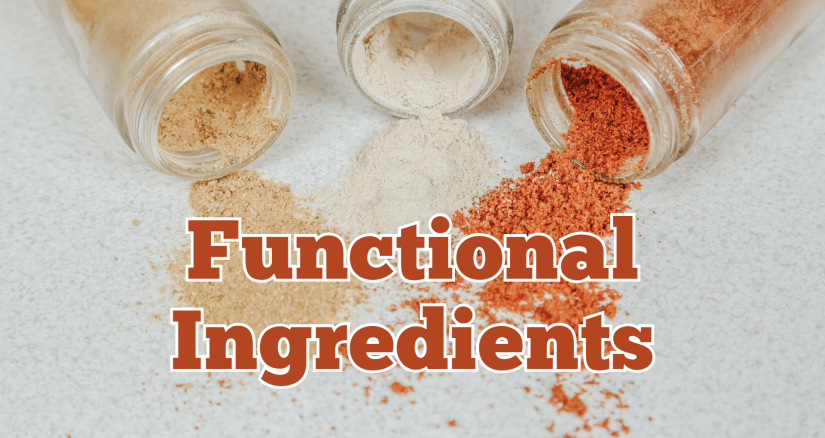 Formulation
Formulation
2+ MIN
25/07/2024
Popular Functional Ingredients in the Pet Food Industry
This trend is fueled by consumers' increasing attention to health issues, both human and pet. An ingredient is categorized as functional if it provides health benefits beyond basic nutrition when included as part of a complete and balanced diet.2 Examples of functional ingredients commonly used in the pet food industry include turmeric, chicory root, brewer's yeast, and marine oils. Turmeric Turmeric is a spice derived from the roots of the Curcuma longa plant.3 This functional ingredient has gained considerable attention in the pet and human food industries due to its health-promoting properties. Curcumin, the active ingredient of turmeric, has been proven to be effective in dogs with naturally occurring osteoarthritis.4 In addition, curcumin has been shown to have antioxidant and anti-inflammatory effects.5 Chicory Root The root of the chicory plant is a naturally occurring prebiotic used commonly in pet food as a source of inulin.6 Research has shown that inulin derived from chicory root is more beneficial to host health than synthetic inulin and favors the growth of certain species of Bifidobacterium and Lactobacillus.7 Prebiotic ingredients help to support the growth and maintenance of healthy bacteria living in the gut.8 In addition, prebiotics have been observed to be effective in the enhancement of the immune system.9 Brewer's Yeast Historically, the pet food industry has used brewer's yeast as a palatability enhancer; however, recent research has shown that brewer's yeast also has immunomodulatory and gut health-promoting effects.10-12 Brewer's yeast supplementation results in beneficial changes in markers of intestinal function.13,14 In addition, yeast products may also boost antioxidant activity in cats and dogs due to their β-glucan and mannan content, which are thought to be the main actors in the antioxidant capacity of yeasts.15 Marine Oils In pet food, the use of marine oils has gained traction due to its EPA and DHA contents.16 It is known that supplementation of EPA and DHA improves the skin and coat quality of dogs with skin disease.17,18 In addition, EPA and DHA have been shown to have anti-inflammatory effects in dogs with heart and hip diseases.19-21 Supplementation of DHA-concentrated marine oil has also been shown to be effective in supporting the cognitive health of puppies.22 The incorporation of functional ingredients into pet foods, treats, and supplements has grown in recent years. As consumer knowledge of animal health and diet quality has improved, so has the desire to maximize their quality of life.23 Source: BSM Partners
 Market Information
Market Information
3+ MIN
23/07/2024
Por María Candelaria Carbajo
Customer experience in pet food, from 0 to 100 in degree of value for brands
Thanks to the pandemic, some of the points that consumers consider most important today were revealed: timely shipping, adequate information, and quick customer service, among others. Think about airlines, for example. It is no longer strange to hear someone you know recommend avoiding certain platforms or companies because 'if there is a problem, they never answer.' This applies, and will eventually apply, to all industries. Yes, even ours, if we consider that pets are increasingly important in the lives of their owners! Consumer experience: a branding (and marketing and sales) strategy With digital strategies, a brand's touch point with its customers (direct or not) constantly multiplies. What was previously known as a mere means to obtain new potential, known as the sales funnel, today is also an essential space to constantly feed the link with a phase even after the first purchase. The truth is that the more we know about our potential consumers, the better experiences we can offer. Customer experience is one of the main factors when it comes to retaining clients. And, if someone who buys from us again is one of the most economical (in terms of profitability), we must put our efforts there to be able to retain them. Furthermore, for that person who chooses us again (and for factors that exceed the best price or a good product, the simplest reason why a customer chooses a brand or store), we will be building loyalty that, over time, will translate not only into greater spending but also into free advertising space. Who doesn't recommend what is functional for them and meets all their expectations? 3 pillars of a good Customer Experience Personalization One of the keys to a successful user experience is personalization, but here's the challenge: true personalization is only possible if we really know our customers. Of course, we must know that bad personalization is much (much!) worse than not doing it because it reveals what people do not like to know: that, after all, what you send them in an email offering them "that" ideal product is not a person but a system of algorithms and artificial intelligence (as one of the many possible examples). Once we truly get to know our customers, we can move on to personalized design of the offered experiences. Omnichannel Omnichannel has the great benefit of allowing easy and continuous interaction with customers and creating value even after the purchase. For this year, there are already statistics stating that businesses with strong omnichannel strategies have retention of up to 89%, compared to 30% for those with weak strategies. These types of plans apply to both companies that sell DTC and retail resale merchants and are essentially about creating a path to invite the consumer to stay. After-sales service With what it costs, today, in terms not only of money, but also of effort, to get a person to stop at a brand and choose it to make a purchase, we cannot allow ourselves to neglect the post-purchase moment and risk losing one potentially lasting due to lack (or, in many cases, poor) care. In this instance, the cost-benefit relationship is what provides value to customers, given that what is at stake is no longer a single purchase but the entire brand image. Brand trust: reputation in aeternum Today, establishing a brand in the pet industry and standing out in the market comes down to trust and loyalty. Owners want brands that guarantee their pets a long, healthy, and happy life. But the truth is that trust will not be generated just with a good shopping experience. It is essential that the same effort be made to provide transparency, quality, and food safety. It's about, at the end of the day, finding the best way to provide lifelong value. A brand will feel true success and satisfaction when its initiatives have created long-term relationships with its customers. Source: All Pet Food Magazine
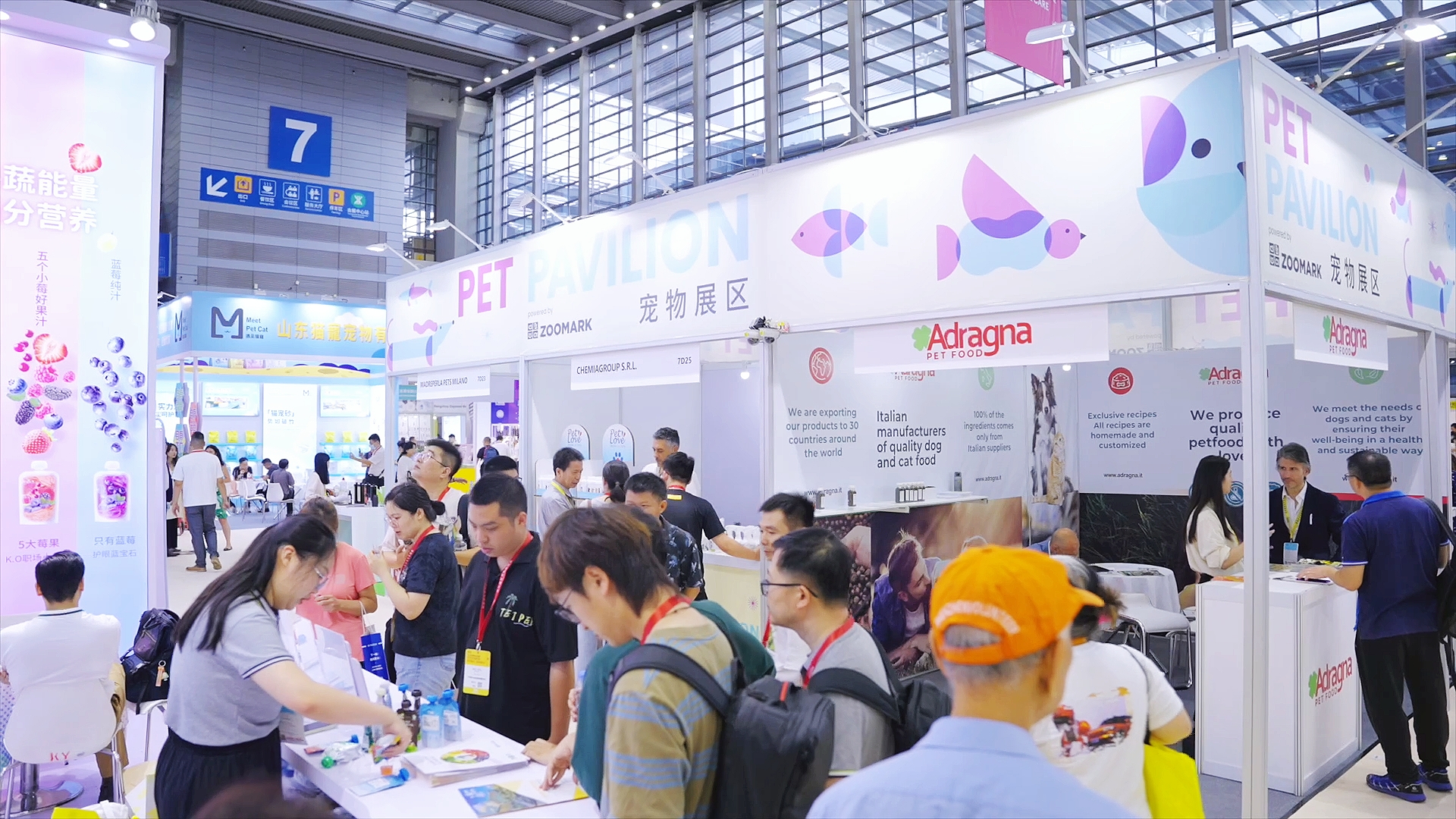 Market Information
Market Information
4+ MIN
19/07/2024
ZOOMARK triumphs in China
The third edition of Marca China further strengthened BolognaFiere's role as a partner for companies wanting to expand into emerging markets. The group has had a Chinese office in Shanghai since 2005 and founded BolognaFiere China Ltd back in 2007. The company – which employs over 50 people – organises trade shows and other projects in China and provides support to Chinese businesses at Italy's major international shows. Pet Pavilion powered by Zoomark is the result of Zoomark's partnership with Marca China that brings the pet sector into the private label industry for the first time. Pet Pavilion hosted 30 exhibitors from Italy and around the world, showcasing key pet industry products including snacks and food, grooming solutions and hygiene and cleaning items. Over 700 professionals – both buyers and distributors – visited the pavilion. Luisa Bersanetti, Exhibition Manager at Zoomark, described the event's success: 'The pet industry is increasingly versatile and is always on the lookout for new channels. This chance to meet Chinese private label firms provided new opportunities and incentives for businesses. Zoomark's approach to seeking and proposing innovative solutions for pet companies has made a successful landing in the dynamic Chinese private label market.' The three-day trade show enabled producers, distributors and retailers to enter into lucrative partnerships that support the development of the Chinese own-brand market. This year's event introduced the '1+2' model, which offered exhibitors a special preview day to meet buyers at the show, thereby expanding their networking opportunities. Various events designed to promote B2B meetings were organised for Marca China exhibitors on the first day: a buyers' product selection, sharing sessions, a featured product showcase, a welcome dinner and, most importantly, training sessions. Training Sessions by Zoomark Zoomark's two training sessions proved to be very successful. In Pet Industry Insight. Distribution Channels of China's Pet Market and the Guidelines of Imported Pet Foods, pet industry key opinion leader and commentator Luo Tian Jun, the founder of Changsha Baozai Meituo Media Culture Co., Ltd., presented some data on the industry and offered guidelines on handling imports and exports in the Chinese market. Paola Cane, regulatory adviser and author and CEO of Mia Solution, ran a popular session entitled Retailers' Private Brand Track: Are Pet Products Followers or Dark Horses? In her eagerly anticipated talk, Paola Cane revealed some signs of a change in pet culture: owners are increasingly more aware that their cats, dogs and other companions are not human, and are therefore searching for products that best meet their needs as pets. Pet Pavilion powered by Zoomark attracted a great deal of interest among visitors from Asia and across the world, thanks to the efforts of the Italian Trade Agency (ITA), which gave the following statement: 'To mark the launch of Pet Pavilion powered by Zoomark at Marca China, the Italian Trade Agency (ITA), in partnership with BolognaFiere China, invited a group of pet food and pet care professionals from China, Singapore and Indonesia to meet the exhibitors at Pet Pavilion. The foreign delegation was able to deal with them and so boost their development opportunities in Asian markets. A Buyers' Lounge was also set up at Pet Pavilion, where Italian Trade Agency (ITA) staff could introduce their work and provide support to Italian businesses at the show.' Pet food and pet care companies unveiled their latest products to the Chinese market at Pavilion through Vision, Zoomark's revolutionary new product exhibition formula dedicated to new developments in the industry and future trends in China. China provided a unique and unmissable opportunity for all pet companies involved in private label and co-branding ventures and interested in expanding their business to the Chinese market, particularly in the large-scale retail channel or on e-commerce platforms, areas overlooked by other Chinese trade shows, which focus mainly on specialised pet retail. Zoomark's partnership with Italian Trade Agency (ITA), combined with the expertise of BolognaFiere and its network of agents across key European markets, has reinforced its globalisation strategies, which were directed towards encouraging foreign professionals to visit the Pet Pavilion. New agreement between Zoomark and TOPS Zoomark has also strengthened the collaboration between the Chinese and European pet worlds by entering into a partnership with TOPS: The One Pet Show, a new pet trade show launched in 2023 that attracts 20,000 visitors and thousands of exhibitors to Shanghai every year. The aim of the new venture is to promote the two events in both Europe and China and to provide additional content, such as the 'China Focus Day' that TOPS will organise at Zoomark 2025. TOPS will also be responsible for setting up an area at BolognaFiere to showcase high-tech Chinese products, proving the Chinese pet industry's extraordinary market potential and the vital role played by innovation. TOPS will promote Zoomark through all available channels. Both sides are aiming to attract as many international exhibitors and visitors as possible to their respective shows. The partnership will help businesses operating globally in the pet sector to expand their presence and will promote important synergies within the market. Source: Zoomark
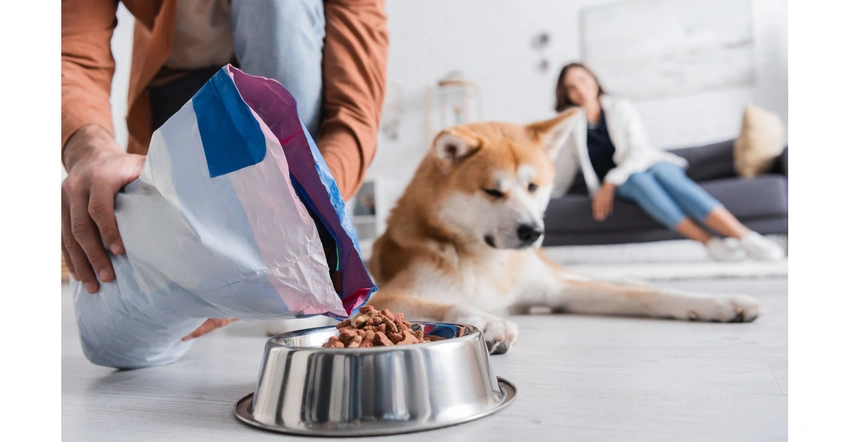 Market Information
Market Information
4+ MIN
18/07/2024
Por María Candelaria Carbajo
Is it possible to have a plastic-free pet food industry?
How is plastic production and consumption in LatAm? According to a study carried out at the end of 2021 by the organizations Break Free From Plastic, Gaia, and Taller Ecologista, in the seven most populated countries in the region, the annual consumption is generally above 30 kg per person: in Mexico and Chile it is 50 kg/inhabitant/year and in Argentina and Brazil it is 40 kg/inhabitant/year, for example. Within the plastic packaging segment, those used by the food and beverage industry are the most important ones. Most products marketed in plastic containers are ultra-processed foods and beverages, which implies that they require packaging with specific treatments (often involving large amounts of water, energy, and chemical consumption) to provide the required conservation condition for each product and its ingredients. The use of bottled water to hydrate pets is becoming more and more common, due to the large number of minerals, chlorine, and other microingredients that drinking water brings directly from the taps. Environmental and health impact of the plastic industry The production of plastic resins and plastic transformation processes are highly energy-demanding and, consequently, large emitters of Greenhouse Gases (GHG). Its degree of pollution is such that, at a global level, it is estimated that, by 2050, if current trends in the production and handling of this material continue, plastic could consume between 10 and 13% of the entire carbon budget. But pollution is not just a number impossible to measure. It also directly impacts those communities closest to industrial hubs. It is not necessary to do a very deep search on the Internet to find cases of complaints or claims from populations highly affected (and in ways that even they are unaware of) by this type of production. For example, the community of Ingeniero White, in Argentina, has been carrying out mobilizations for more than 10 years due to the impacts generated by living with a petrochemical hub. In fact, in 2012, a study concluded that the population of that region had a higher prevalence of respiratory and autoimmune diseases, such as hypothyroidism. On the other hand, we can also talk about the additives used throughout the process, for example, resin production, and that contain toxicity properties, such as phthalates, brominated flame retardants, and organochlorine compounds, and more. Alternative routes, a possible future The main challenge we face as an industry and society today is that being brutally honest, manufacturing and transporting pet food without any plastic is very difficult. Although research and development of new proposals are increasingly on the rise, the truth is that today plastic packaging offers the necessary conditions to maintain the freshness, texture, humidity, and food proper condition, from when it is finished until it reaches the pet's bowl. However, let's briefly learn about some of the alternatives that are being implemented to improve the situation: PET plastics recycling: Thanks to support, development, and research, it is possible to affirm that PET processing and recycling is advancing at the same pace as the demands for environmental and social care. In recent years, there has been an increase in the use of closed-loop recycling systems (recycling PET to produce new PET products), which, although it does not eliminate plastic use, significantly reduces its waste. Using thinner plastics: As many pet food variants are wet/oily products, many alternative compostable materials are inefficient for packaging because they would decompose before even being discarded and would not have a sufficient oxygen barrier to maintain the food fresh. For this reason, many companies are limited to using plastic but are looking for alternatives to reduce it as much as possible, using much thinner plastic coatings (up to 60% less). Some also cover the packaging with outer layers, made of other materials, such as recyclable cardboard, to provide the structure and security necessary for transportation and logistics. Using transparent plastic, since this is easier to recycle. Conclusion We have tried to compile and make visible some aspects of the plastic problem that, with the hustle and bustle of daily routines and operations, tend to remain out of sight. We have more and more information about the impact generated by discarded and single-use plastic, but looking for alternatives is not enough: we must be aware of the damage caused by the entire production and preparation process, not only in the international ecosystem but also more deeply into local regions and their populations. If one thing is clear it is that keeping collecting non-recyclable materials in landfills is not the best option for anyone, which is why we encourage the pet food industry to continue working and researching to overcome the obstacles that prevent sustainable, reusable packaging being the most used type of packaging. Source: All Pet Food
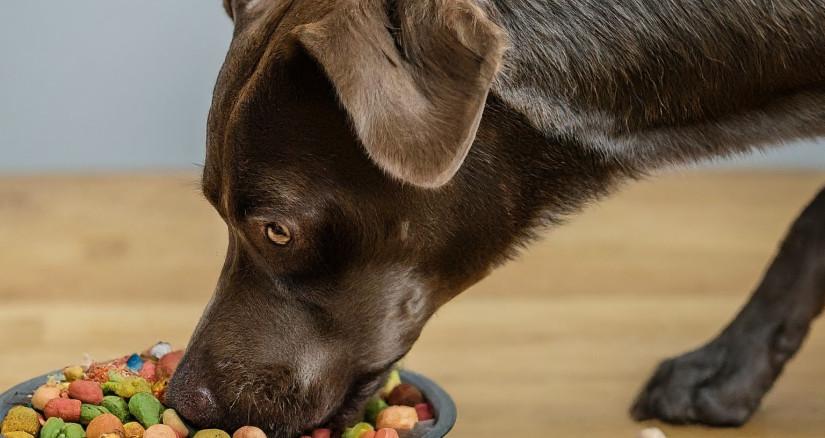 Plant Based
Plant Based
4+ MIN
17/07/2024
Plant-Based Proteins for Pets
Historically, the primary plant proteins utilized in pet food applications included soy, corn, and wheat proteins; however, pea, potato, and rice proteins have emerged in recent years as other viable plant-based options.2 Protein is of utmost importance when considering adequate nutrition for pets. The Association of American Feed Control Officials (AAFCO) establishes minimum protein guidelines for pets in the United States. According to AAFCO, the minimum protein requirement for adult dogs is 18% and 22.5% for puppies, to support growth and reproduction.3 The minimum protein requirement for adult cats is 26% and 30% for kittens, to support growth and reproduction.3Interestingly, as consumers' interest in the utilization of plant protein sources in pet food increases, there are currently no regulatory standards or evidence-based data to determine the percentage of protein that should come from plant versus animal sources, or if it even matters. Dietary protein is necessary to provide essential amino acids and build protein reserves in the body.4 Some plant proteins are commonly used in pet food applications for their complementary amino acid profile when paired with other proteins and grain sources.5,6 In general, plant-based ingredients are thought to have less variable nutrient composition when compared with animal-based ingredients.6,7 It is well established that dogs and cats who consume complete and balanced plant-based diets maintain overall health compared to animal protein-based diets.8,9 In addition, studies have observed that plant-based pet diets can have comparable nutrient digestibility as animal-based pet diets with similar nutrient profiles.6,10,11 This is true for both dogs and cats. A recent study by Golder et al.12 noted that cats can potentially digest plant proteins more fully and efficiently than dogs.12 However, these research studies are still limited, and the long-term effects are not as well studied. With that, pets that do not have a food aversion to animal-based proteins can still consume these diets and can maintain a supply of essential amino acids. As consumer interests shift toward plant-based diets, new plant proteins will continue to be identified and utilized in pet food applications. These may include testing these new ingredients for safety evaluation before entering the pet food market, long-term data collection on the impact of health on pets, and sustainability. Source: BSM Partners References Loeb, J. 2020. The trouble with vegan cats and dogs. Vet Rec. 186(7):197. Domínguez-Oliva, A, Mota-Rojas, D, Semendric, I., Whittaker, AL. (2023). The impact of vegan diets on indicators of health in dogs and cats: A systematic review. Vet. Sci. 10(1):52. DOI:10.3390/vetsci10010052. 2024. Official Publication; Association of American Feed Control Officials: Champaign, IL, USA. Laflamme, DP. 2008. Pet food safety: Dietary protein. Topics Companion. Anim. Med. 23(3):154-157. Hill, D. 2004. Alternative proteins in companion animal nutrition. In Pet Food Association of Canada Fall Conference. Bednar GE, Murray SM, Patil AR, et al. 2000. Selected animal and plant protein sources affect nutrient digestibility and fecal characteristics of ileally cannulated dogs.Arch. Anim. Nutr. 53:127–140. DOI: 10.1080/17450390009381942. Vanelli, K, de Oliveira, ACF, Sotomaior, CS, Weber, SH, Costa, LB. 2021. Soybean meal and poultry offal meal effects on digestibility of adult dogs diets: Systematic review. PloSone. 16(5):e0249321. DOI: 10.1371/journal.pone.0249321 Linde, A, Lahiff, M, Krantz, A, Sharp, N, Ng, TT, Melgarejo, T. 2023. Domestic dogs maintain positive clinical, nutritional, and hematological health outcomes when fed a commercial plant-based diet for a year. bioRxiv, 2023-02. Clapper, GM, Grieshop, CM, Merchen, NR, Russett, JC, Brent, JL, Fahey, GC. 2001. Ileal and total tract nutrient digestibilities and fecal characteristics of dogs as affected by soybean protein inclusion in dry, extruded diets. J. Anim. Sci. 79(6):1523-1532. Liversidge, BD, Dodd, SA, Adolphe, JL, Gomez, DE, Blois, SL, Verbrugghe, A. 2023. Extruded diet macronutrient digestibility: Plant-based (vegan) vs. animal-based diets in client-owned healthy adult dogs and the impact of guardian compliance during in-home trials. Frontiers Anim. Sci. 4:1288165. Bednar, GE, Patil, AR, Murray, SM, Grieshop, CM, Merchen, NR, Fahey, GC. 2001. Starch and fiber fractions in selected food and feed ingredients affect their small intestinal digestibility and fermentability and their large bowel fermentability in vitro in a canine mode. J. Nutr. 131(2):276-286. Golder, C, Weemhoff, JL, Jewell, DE. 2020. Cats have increased protein digestibility as compared to dogs and improve their ability to absorb protein as dietary protein intake shifts from animal to plant sources. Anim. 10(3):541. DOI:10.3390/ani10030541. About the Author: Ada-Miette Thomas received both bachelor's and master's degrees in food science with an emphasis on nutrition. Ada-Miette conducted research with a focus on human nutrition and studied the effects of carbohydrate sources on markers of Metabolic Syndrome in adults.
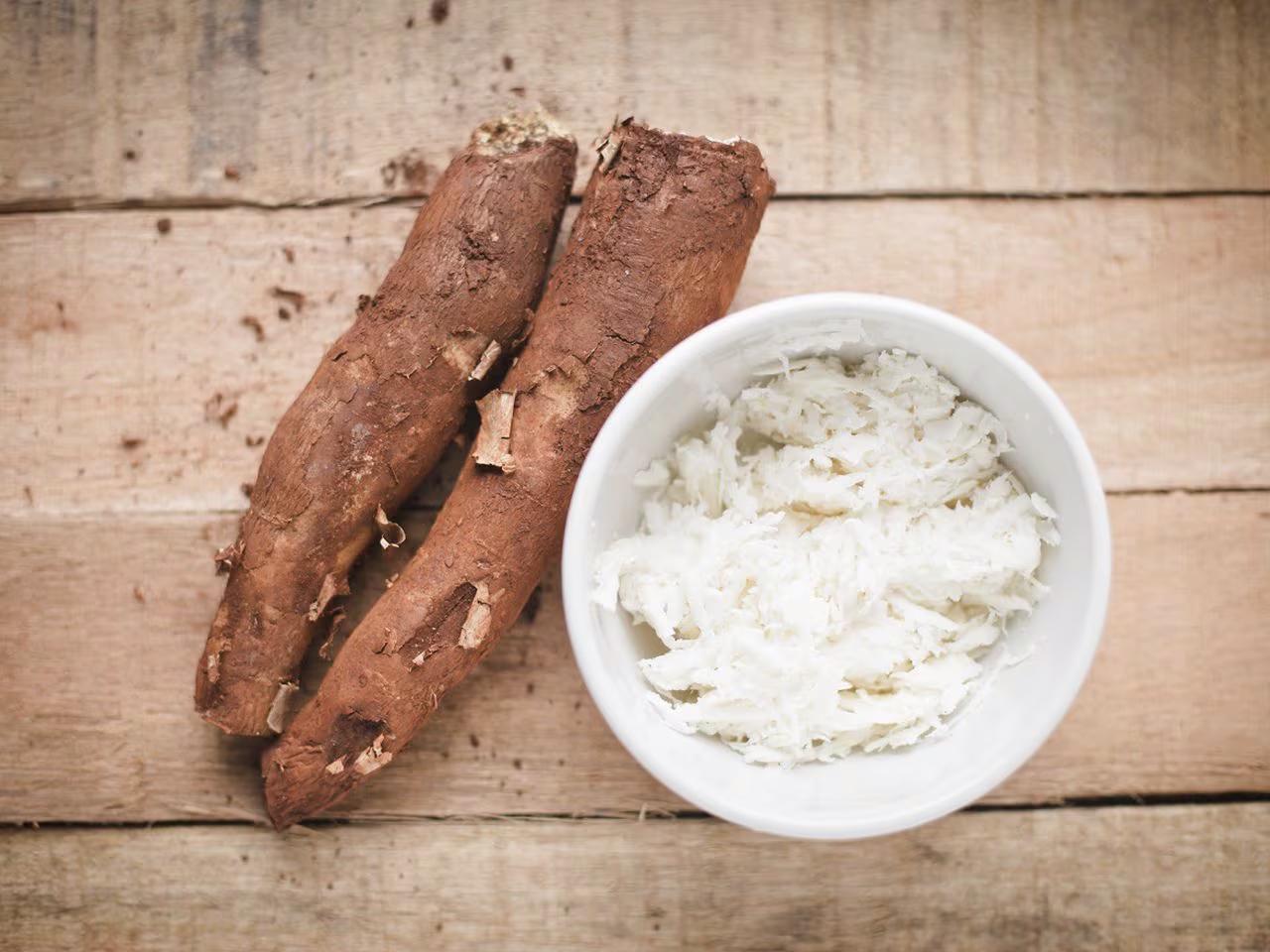 Formulation
Formulation
5+ MIN
16/07/2024
Por Ludmila Barbi T. Bomcompagni
Odor Adsorbents: How to Use Them Strategically in Pet Foods
Among the odor adsorbent options used today, three stand out for being frequently present in different brands and categories of pet food: natural zeolite, bentonite, and yucca extract, each with its characteristics and modes of action. Knowing each of them better can be very important when optimizing the development of a product and its market positioning strategy. The zeolite with proven benefits for pet food is the clinoptilolite type. It is a natural crystalline mineral with a structure full of cavities formed by chemical bonds, which confirms a large surface area and high adsorption capacity. One of the most important properties of zeolite is its high cation exchange capacity (CEC) compared to all other minerals of this type. Cation exchange is a process by which ions present on the surface of the zeolite are exchanged for others present in the surrounding solution. Its structure contains empty spaces that can be filled with ions, water, and other molecules. This gives the zeolite a high adsorption capacity for ions, especially cations. When added to dog and cat food, zeolite can adsorb compounds in the form of cations present in digestion, including ammonia, responsible for the unwanted odor of feces. Additionally, zeolite's ability to absorb moisture improves the format of animal feces and can also help extend the shelf life of food, preventing spoilage due to high humidity and toxin contamination, as it is also a mycotoxin adsorbent. Bentonite, a clay composed essentially of minerals from the group of smectites and mortmorillonites, is characterized by its great capacity to swell when mixed with water since it has a laminar chemical structure with a surface charge between 0.2 and 0.6 by formula unit and the lamellae move away in the presence of water, acting like a sponge. Therefore, when added to animal feed, bentonite is capable of very effectively absorbing the moisture present in feces. The mechanism of action of bentonite in relation to odor reduction implies that its adsorption capacity also binds to compounds, such as ammonia, through cation exchange, secondary to its swelling action. However, it is important to note that the effectiveness of bentonite specifically in reducing fecal odor in dogs and cats is not well understood and may vary depending on several factors, including its purity, type, and purpose of inclusion in the formula. Yucca extract is extracted from the Yucca schidigera plant, commonly found in deserts, and has saponin as one of its components, which has been studied in companion animals for some decades. One of the mechanisms by which cassava extract reduces the odor of excreta is by inhibiting urease, an enzyme that converts urea, a product of nitrogen metabolism, into ammonia. Thus, the lower the action of urease, the lower the amount of ammonia present in the feces and the subsequent reduction in fecal odor. Another hypothesis refers to the action of glycocomponents, the water-soluble part of the cassava extract, which has an affinity for ammonia and transforms it into nitrate and nitrite. The quality of the cassava extract is evaluated by the quantity and quality of the saponins and extract necessary to neutralize 50% of the ammonia in a 'standard' solution, a parameter known as B50. The following table compares the main properties and benefits of each odor adsorbent described. According to the table, zeolite has a greater ion exchange capacity, greater removal of ammoniacal nitrogen, and a slightly lower water removal capacity since, being laminar, it swells and can absorb more water. Considering the physicochemical properties of the additives, we can infer that zeolite has greater efficiency in removing ammonia due to its greater cation exchange capacity, compared to other additives evaluated for fecal odor. Regarding the performance of in vivo tests, we found several studies that evaluated the inclusion of clinoptilolite zeolite and cassava extract at different levels of inclusion in diets for dogs and cats, and that also compared these two additives with each other. For bentonite, there are no studies that support evaluating inclusion at different levels, making it difficult to understand what the optimal level of use would be to reduce fecal odor in pet foods. For this reason, products that use bentonite as an additive, usually in the economy or standard category, use it to improve fecal scores and not to reduce odor. A Maia et al. (2010) study evaluated the fecal odor of dogs at different zeolite levels of 0.50, 0.75, and 1.00% and YSE at a concentration of 125, 250, or 375 ppm in the diet of healthy dogs. Diets with zeolite at levels of 0.75 and 1.00%, respectively, had better classification in the sensory analysis, indicating a significant reduction in the odor of the evaluated material. Therefore, 0.75 and 1.0% levels of the additive provide a substantial reduction of fecal odor in the sensory analysis. This results in a high cation exchange and gas adsorption capacity of the clinoptilolite zeolite, which adsorbs the gases produced during digestion, removing them from the animal's intestinal gastric tract without releasing them into the environment. Roque et al. (2011) added the same concentrations of zeolite and cassava extract for cats to a commercial food. The diet with 1.0% zeolite was considered similar to the control and inferior to the rest of the treatments. On the other hand, the doses of 0.5 and 0.75% of zeolite presented better fecal odor values than the control diet. In practice, we see the use of zeolite more frequently in high-category and super premium food formulations, justified by the evaluation studies mentioned here and by its efficiency in eliminating odors and adjusting fecal score, being the first option for products foods with high added value. As has been demonstrated, cassava extract has an action on fecal odor, and, as it has an optimal inclusion level between 0.0125% and 0.035%, it is usually present in foods from premium to super-premium categories since the level of lower inclusion can reduce formula costs. However, a detailed evaluation is necessary, as cassava extract can cost up to more than 10 times the value of clinoptilolite zeolite. Conclusion Often, we come across commercial foods that use zeolite with yucca extract in the pet formula. By using these additives together in dog and cat foods, manufacturers aim to offer a comprehensive approach to animals' digestive and overall well-being. Zeolite is effective in improving fecal score and reducing odor, and, in association with yucca extract, these additives can promote beneficial effects on intestinal health, contributing to the long-term comfort and health of pets. Source: All Pet Food Magazine Bibliographic references: MAIA, G. V. C. et al. Zeolites and Yucca schidigera in commercial ration for dogs: Palatability, digestibility and reduction of fecal odors. Revista Brasileira de Zootecnia, v. 39, n. 11, p. 2442-2446, 2010. MOORE, D.M., REYNOLDS, JR. R. C., X-ray Diffraction and the Identification of Clay Minerals. Oxford University Press, Oxford, 1989. 332 p. ROQUE, N. C. et al. Increasing levels of zeolite and Yucca schidigera in diets for adult cats. Revista Brasileira de Zootecnia, v. 40, n. 11, p. 2471-2475, 2011.
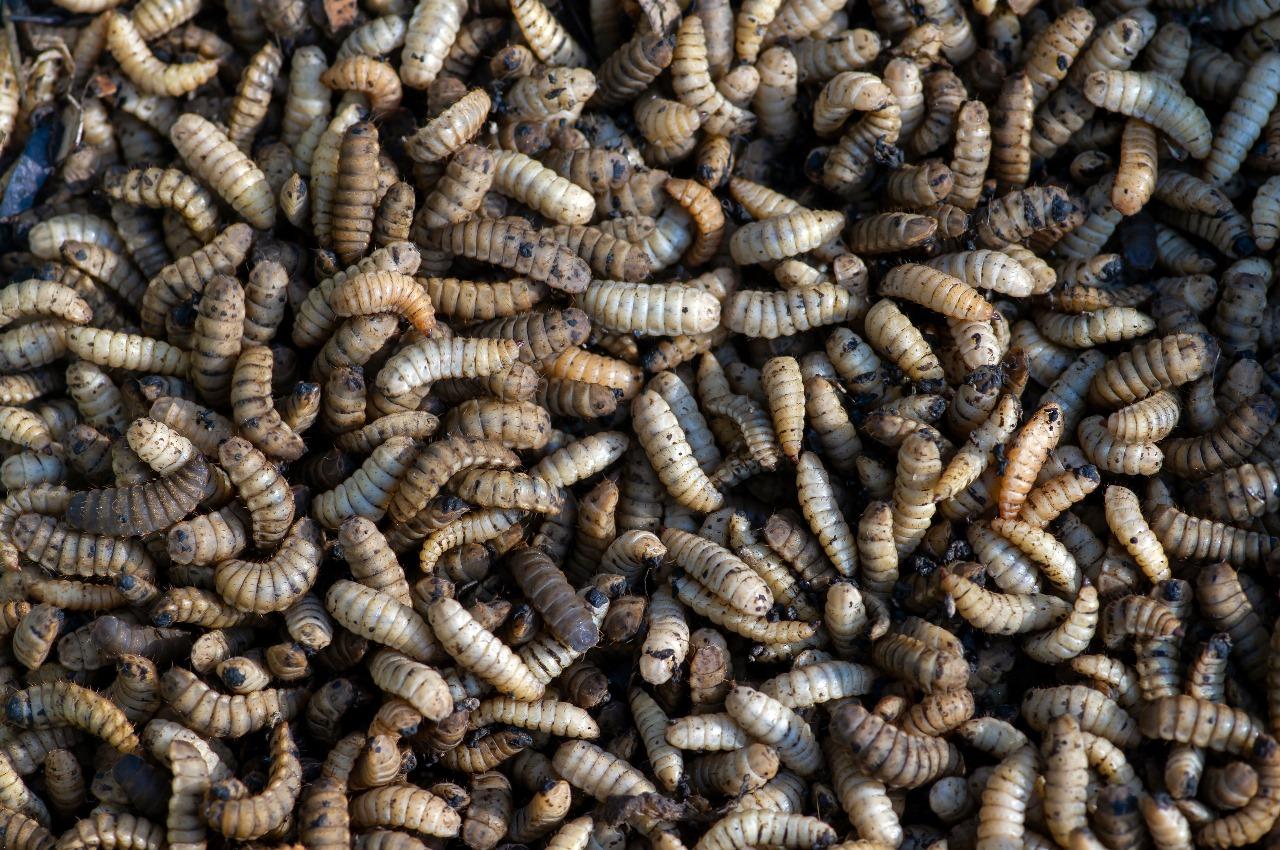 Insect Based
Insect Based
4+ MIN
15/07/2024
Insect-based Ingredients
Common types of insects used in the production of feed There are currently seven species of insects that are authorised in the EU for use in pet food2 . The top three most prevalent species of farmed insects for use in pet foods are illustrated below. What is unique about insects? Insects are able to eat by-products and foods that are surplus to human requirements and efficiently convert them into quality proteins and produce valuable byproducts such as chitin and insect oil. This biological reprocessing of by-products is the key concept underpinning the use of insect protein in animal feeds. Moreover, the excrements of insects, so called insect frass, can be used as a natural fertilizer. Different forms of insect-based ingredients The insects are mainly rendered into high protein meal (e.g. 55% protein with an average 80% digestibility) (Bosch et al. 2020) and fats, or made into puree which is stored frozen. Whole dried insect alternatives are available, but these are mainly targeted at the bird and fish market. Nutritional profile & potential added benefits Insects such as black soldier fly larvae are rich in protein and have a clear potential in animal nutrition. Additionally, insects can have high concentration of fats, minerals, and vitamins, depending on what they are fed and on their larval stage at the time of harvest (picture below). Palatability Studies show that cats and dogs may have different tastes when it comes to insects, and that the type of insect and the amount included can affect the food acceptability. Test reports by pet food companies showed that dogs may favour dry foods with black soldier fly larvae meal over those with yellow mealworm meal (YMW), while cats may favour the YMW-based food over foods with black soldier fly larvae meal (Bosch et.al. 2021). Environmental Benefits Insects require significantly fewer resources than traditional livestock. Life cycle assessment studies indicate that insect proteins can have a lower environmental impact (eg., lower land use, lower water use, less emission of CO2 – equivalents) than animal proteins from ruminants, pigs, and poultry when produced using renewable energy and fed with agricultural by-products (Van Huis and Oonincx 2017). These environmental impacts may further diminish as production facilities scale up and increase their capacity in coming years. A gram of edible protein from beef requires 8-14 times more land and 5 times more water than a gram of protein from mealworms and has a higher environmental impact with respect to greenhouse gas emissions. Broiler chickens are associated with 1.3 – 2.7 times higher emissions, and beef cattle emit 6 -13 times more CO2 equivalents than mealworms, when measured in terms of 1 g of edible protein (Oonincx and De Boer 2012). As processing and insect feed is producer-dependent and technology is evolving rapidly, using suppliers' primary data is recommended when evaluating their environmental impact. Insects are also efficient feed converters, depending on their species and the diet consumed. Mealworm and house crickets have been reported to convert some feed sources into body mass with similar efficiency to poultry (Oonincx et al. 2015). In conclusion, insects provide a sustainable source of animal protein, and producing valuable by-products such as chitin and insect oil. Consumer attitudes and acceptance levels Market research work undertaken by PROteINSECT (2016) indicated that a high percentage of consumers demonstrate acceptability of insects as a protein source in animal feed3 . Consumers also showed a desire for more information about insects as an alternative sustainable protein source. Growing media attention and campaigns by farmers, academics, non-profit organizations (such as IPIFF4) and pet food companies are helping to increase acceptability of insect-based ingredients among pet professionals and owners. The increased acceptability of insect-based pet food ingredients has been further bolstered by research which indicates that insects are a nutritious source of protein and other essential nutrients, as well as potentially being more sustainable than conventional meat sources for pet food.Moreresearchandlong-termstudiesareneededto substantiate these findings. INTERESTING FACTS • Farmed insects are typically fed on a variety of plant-based diets, such as spent brewery grains, fruits, vegetables, and other vegetable or cereal by-products. • The initial farms mainly began in the tropics but now span the globe. Today, there are over 100 farms in European countries such as Germany, The Netherlands, France, Poland, Belgium, and UK. Currently, over 50% of insect production is being directed towards pet food. According to a RABO Bank report, the demand for insect protein is predicted to rise from 120,000 metric tons to half a million metric tons by 2030 (De Jong & Nikolik 2021). Source: FEDIAF References: 1 These are specific, authorised, species of insects that are commercially produced, under controlled conditions, for animal feed. 2 Regulation No. 2017/893 authorised the use of insect proteins originating from seven insect species which are neither pathogenic nor have other adverse effects on plant, animal, or human health. PROteINSECT (2016). 'Insect Protein – Feed for the Future. Addressing the need for feeds of the future today' at proteinsect.eu/fileadmin/user_upload/press/proteinsect- whitepaper-2016.pdf (accessed on 22 Sep 2020). Van Huis, A., & Oonincx, D. G. (2017). The environmental sustainability of insects as food and feed. A review. Agronomy for Sustainable Development, 37, 1-14. Van Huis, A., Rumpold, B. A., Van der Fels-Klerx, H. J., & Tomberlin, J. K. (2021). Advancing edible insects as food and feed in a circular economy. Journal of Insects as Food and Feed, 7(5), 935-948. 3 70% of those surveyed said that it is totally acceptable to feed insect protein to farmed animals. 4 The International Platform of Insects for Food and Feed.
 Market Information
Market Information
2+ MIN
12/07/2024
Iberzoo Propet strengthens its professional and global identity, positioning itself as a platform for showcasing the latest trends.
The next edition of IBERZOO PROPET, the renowned international fair in the pet industry sector, is already in motion. Organised by IFEMA MADRID and supported by AMVAC (Madrid Association of Pet Veterinarians) and AEDPAC (the Spanish Association of Trade and Industry in the Pet Sector), the event's Organising Committee has been established. Mark your calendars for 26 to 28 February 2025, when the next edition will take place. The upcoming edition will strive to surpass the numbers achieved at this year's meeting. To achieve this objective, the primary emphasis will be on individuals working in this field, specifically veterinarians, specialised stores, breeders, trainers, pet shelters, and animal protection associations. This will further enhance its reputation as a leader in the Iberian Peninsula, owing to the strategic location of the city of Madrid, a hub for the pet industry in Europe, where the Iberzoo Propet event takes place. The next instalment of this trade show is also looking to further its reach into the global market, with an increase in the number of international companies to over 40. In the previous edition, 10% of attendees were from abroad, with a strong showing from countries like Portugal, Italy, and France. Another area that will continue to receive attention is the programme of activities that accompanies the fair, serving as a great showcase for trends and innovations. In the previous edition, this programme brought together over 900 attendees. At the next edition, Iberzoo Propet will feature the 42nd VetMadrid Congress; the Canine Styling Stage; the 7th FORUM of Trade and Industry in the Pet Sector in Spain, organised by AEDPAC; the Artero Workshops; the Veterinary Classroom and Scientific Forum; the Space and Impulse Awards, as well as the Sector Evening where the Antón Awards will be presented. Iberzoo Propet gets a new image Ahead of the next edition in February 2025, IBERZOO PROPET will be launched with a new image that highlights the evolution and consolidation of this fair in order to become an international benchmark. This means a new design that symbolises the dynamic nature of this fair while preserving the essence and values that always made it such a success. Get all the latest about IBERZOO PROPET on the website. Source: Iberzoo Propet
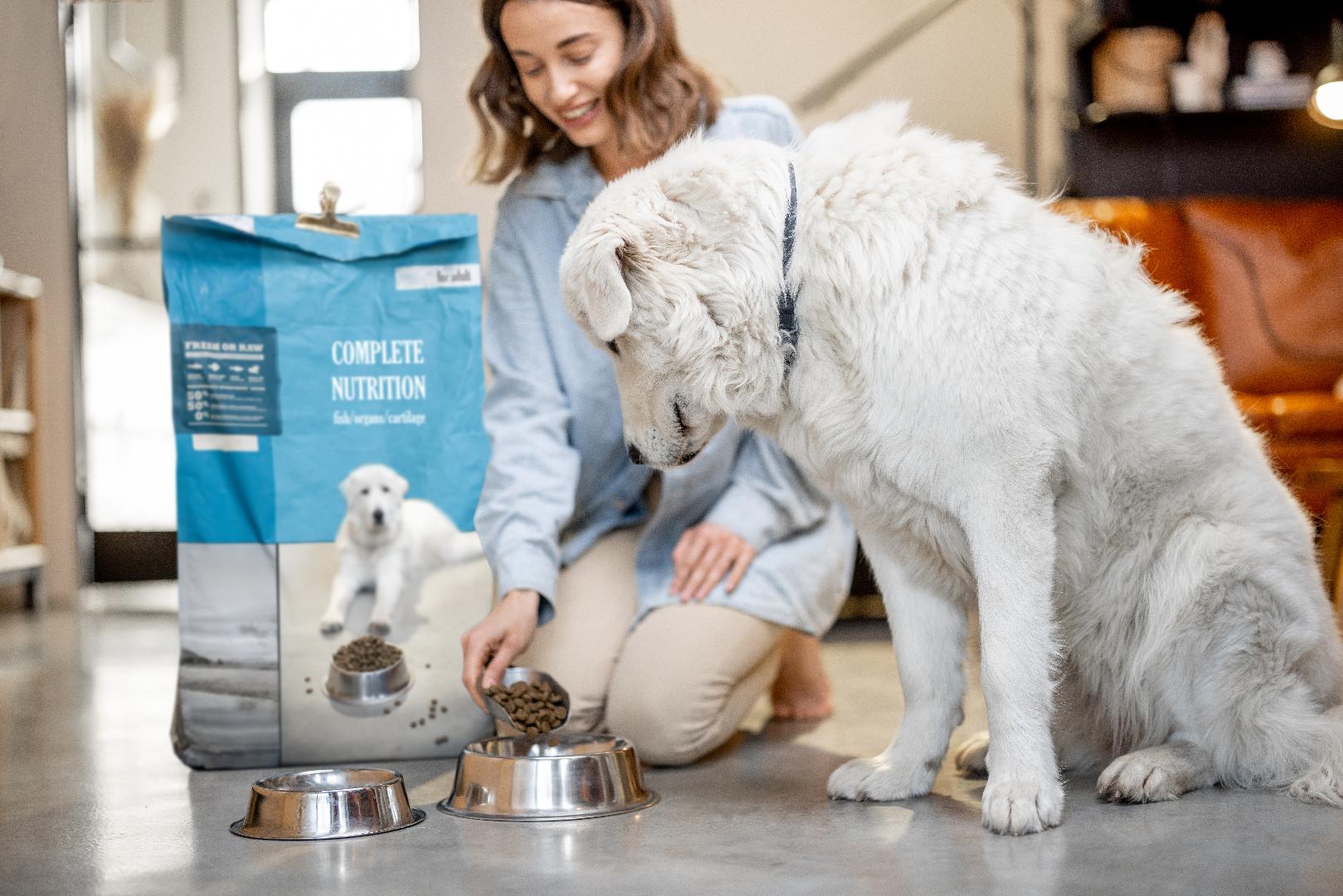 Market Information
Market Information
3+ MIN
10/07/2024
The DTC market is growing exponentially in the pet food industry
The rise of e-commerce platforms and the growing preference for personalized food options are some reasons why this market sector is growing, but they are not the only ones. Current situation In 2022, the global DTC pet food market was valued at $2.1 billion. Now, it is estimated that, by 2032, it will reach a CAGR of 25.1%, driven by both physical and online retailers, known as omnidirectional sales or channels. The most recent data states that, from the hand of NielsenIQ Discover Omnisales, the United States pet industry accumulated $77.5 billion in 2022. 38% of sales came from exclusively online retailers, while 62% corresponded to sales only from physical stores. These numbers indicate that the portion of online sales continues to increase constantly, having already gained 1.8 points in 2022. Why is the DTC sector increasing in pet food? DTC offerings provide direct access to both pet food and care products, often on a more targeted basis, improving the overall consumer experience. That is why this market is currently distinguished by the appearance of niche and premium brands. Without a doubt, one of the key factors that allowed the development of this portion of the market are e-commerce platforms and digital marketing, which have grown exponentially since the start of the pandemic in 2020. Furthermore, the truth is that business owners of Pets are increasingly looking for convenient and hassle-free ways to purchase quality pet food. Regions like Asia are a little further behind in development, compared to North America, for example. This portion of the American continent is currently the largest market for DTC pet food. This is because it has a solid online commerce infrastructure, as well as established brands that specialize in sales of this type. 4 keys to your growth Personalized nutrition Most DTC-focused pet food brands are focusing on offering more than personalized nutrition options based on age and breed, such as specific meal plans. Humanization is also leading to a change in consumption, which now focuses more on the willingness to pay for small lots. According to NielsenIQ, this will bring an increase in DTC fresh/frozen sales of up to 4 times their current value. Personalized attention Personalized attention is one of the most important reasons why people choose this type of purchase. This not only means 1:1 care, but also includes drop-shipping, convenience pickup, and subscription models that alleviate the responsibility of reviewing when to replenish products. This convenience-oriented approach ensures a constant supply and simplifies the purchasing process, which is highly appealing to pet owners. Transparency and trust Pet owners are increasingly seeking more transparency in the brands they choose for their pets. Companies are seeing this as an opportunity in DTC sales as a way to prioritize transparency and provide information to increase the loyalty of those who choose their products. Sustainability and environmental care The direct-to-consumer model allows direct participation and feedback from customers, and, in terms of sustainability responsibility, this type of sales offers alternatives such as the return of recyclable packaging, a product replacement system in the same reusable packaging, and more options that encourage those most interested in the environment to choose it. According to Nielsen research, responsible, ethical and local sourcing, and biodegradable packaging are the most influential factors when considering a sustainable brand. Additionally, DTC packaging must be durable enough to withstand the rigors of logistics and handling. A way to be close Generally speaking, it is not an exaggeration to say that the pet product market is becoming increasingly omnichannel. This opens the doors for brands to find new opportunities and connect with consumers in much more loyal and lasting ways. By merging digital and physical presence, brands can increase their reach across retailers with marketing and strategic partnerships that bring them closer to their goals. Source: All Pet Food Magazine
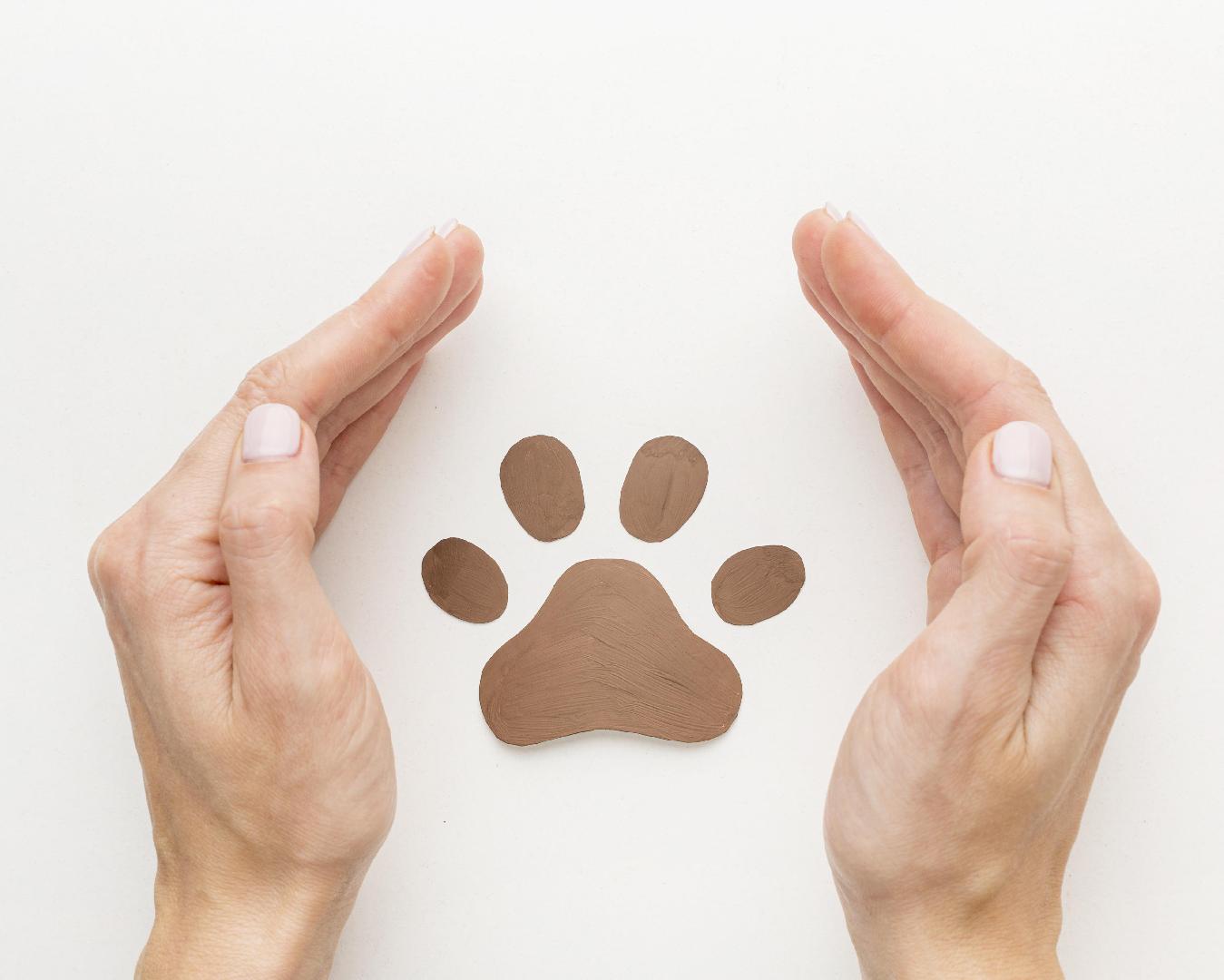 Market Information
Market Information
3+ MIN
09/07/2024
Por Candela Bonaura
Did you know that the global trend increases adoption even more?
Pet population statistics from various sources: In our country, around 78% of Argentines have pets at home. This makes the country the most pets per inhabitant holder in the region. Of all those surveyed, 66% have a pet dog, while 32% opt for the accompaniment of felines (increasing). Breeding, humanization, and pet-friendly trend The pet in the home is considered part of the family, a child. Human food is often used as a reward. Let's remember that this is not ideal, and there are many healthy and more beneficial ways for pets to strengthen their bond with us. This is an anthropomorphism. The acceptance of pets in homes has brought new behaviors in people, giving human characteristics to companion animals. It is normal to see, for example, birthday celebrations in dogs and cats, dog schools, and pet boutiques, such as medical coverage (prepaid) or tracking apps. They accompany us to dinners, vacations, trips, etc. The routine, for both dogs and cats, is an indoor style. The cats are mostly protected and no longer roam around the roofs. Some dogs have mixed habits (indoor and outdoor), but, in general, they spend most of their time at home with the rest of the family. Social networks and pet-influencers Nowadays, owners create pet accounts and social content about their pets. This activity refers to the large number of reels that we find on Instagram or Facebook, among others, in addition to all the tutors who create their accounts for their pets to share with the community everything related to their daily life, looks, activities, etc. Some make their pet influencers not only to get gifts such as food or accessories but generate a bonding action due to the love that pets and animals have awakened and the social awareness that they have generated as sentient beings. This does not leave aside the benefit of working with public figures, with a large number of followers to promote adoption, animal rescue, and the fight against animal violence. Cat population on the rise The ownership of cats as pets is increasing. People consider that felines are more independent than canines. In addition to this, they are long-lived and very clean, two important characteristics of the new lifestyle of the new generations. 'Catmania' in Argentina had a considerable increase in times of pandemic. It is estimated that there are approximately five million felines in the country. There is currently occurring an adaptation of the services of the veterinary center, what can be known as CAT-FRIENDLY medicine, to felines specific needs and their guardians. Veterinary services specification Most veterinary service centers spend a lot of time building a differential that allows them to be more competitive in the market. There is a wide academic offer in each country (conferences, seminars, courses, diplomas), and new business lines creations and new challenges in services provision. Pet guardians are now more demanding and aware of what they want. There is talk of a multispecies family concept. Food importance, by percentage What should a food brand propose today? Providing peace of mind to families by committing to keeping their pets nourished and safe Empathy, understanding the needs of pets and their families Responsibility and genuine concern for pets Passion for pets Seriousness and company support Using social networks to raise awareness and educate, as well as share clear and useful information. Focus group for better understanding of the end consumer (pet) and their family environment. Awareness and the importance of caring for the environment are increasing, which is why eco-friendly products are sought, and people tend to worry about recycling, as well as preserving natural resources. Renewable, recyclable packs, and using raw materials with respect and care for the planet. 'Welcome the era of discomfort, of bad information at our fingertips, which forces those of us who are part of an industry that works with lives to be more trained, communicated, and aware. The noblest lives we can find, that of animals.' Source: All Pet Food Magazine
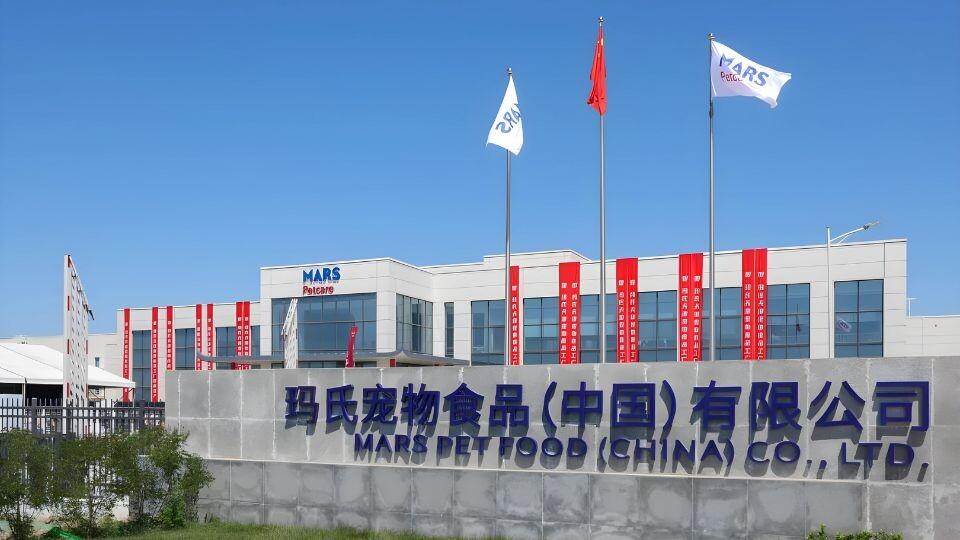 Manufacturers
Manufacturers
1+ MIN
08/07/2024
Mars starts production in Chinese pet food factory
The American multinational has invested nearly CN¥ 1 billion ($138M/€126M) in the 111,000-square-meter facility to enhance domestic and global product demand. Local media reports that the firm's dry food production lines are operational, and a snack production line is expected to launch in the second half of 2024. According to local sources, Mars may soon announce investment plans to introduce a wet food production line. The factory's annual production capacity could exceed 250,000 tons once in full operation. Quality and innovation The production site is located in the Nangang Industrial Zone of the Tianjin Economic and Technological Development Zone (TEDA), 150 km from the capital Beijing. '[The] Tianjin factory, with its persistent pursuit of quality, innovative practices in intelligence, and firm commitment to sustainable development, will provide China's pets and pet parents with better products and service experience,' says Ren Jiashi, General Manager of Mars Pet Nutrition China. Mars chose the location for its 'mature' industrial park and complete infrastructure supporting the pharmaceutical and health industries. Source: GlobalPETS
 Market Information
Market Information
2+ MIN
05/07/2024
Protix appoints Piotr Postepski as new CCO
Piotr Postepski brings almost 2 decades of international experience at global companies to the Protix team. His career spans various leadership roles in the pharmaceutical sector, across different geographies where he has consistently driven growth and innovation. Piotr is a seasoned professional with an impressive track record in developing new business. Before joining Protix, Piotr was instrumental in the development and scaling of a global, innovative animal health business. Trained as a veterinarian, he holds a master's degree in Veterinary Medicine from the Agricultural University of Lublin, Poland. He has further honed his management, leadership and financial skills at Warsaw School of Economics and London Business School.
As CCO of Protix, Piotr will help drive international expansion and, taking a measured approach to growth, will steer Protix towards profitable expansion in the next stage of our journey. He will be responsible for the overall commercial strategy, leading the sales team, marketing and business development activities as well as product development. Piotr will work with the Protix teams to accelerate growth based on collaboration, innovation, a customer centric culture and a clear sense of purpose.
There is strong momentum for insect ingredients. Amid global pressures on raw material availability and the urgent need for sustainable production, Protix's local sourcing and in-house circular production, enhance feed and food chains. Protix has transitioned to the leading commercial scale insect solutions company with international expansion. We are now in a unique position to take a big leap forward and look forward to the contribution of Piotr to the next milestones on our exciting journey to bring the food system back into balance with nature.
About Protix
Protix is the leading company in insect-based ingredients for healthy and sustainable pet food, aqua culture, livestock feed and organic fertiliser. The company is on a mission to create low footprint ingredients that solve major issues in the current food system. Protix contributes to a circular food chain by using waste from the food industry as feed for insects. In turn, the insects are processed into valuable nutrients such as proteins and lipids. Protix's customers use these proteins and lipids as high-quality ingredients for animal feed and pet food. Moreover, residual streams from the insects are used as organic fertiliser. This way, insects close the loop and bring the food system back in balance with nature. Since its foundation in 2009, Protix has developed state-of-the-art, scalable technology, enabling the efficient use of resources and supply chain optimisation, including the reduction and recycling of residues and waste. Protix has been producing insect ingredients at its fully ramped-up industrial scale plant in The Netherlands since 2019. The company takes a measured approach to growth, resulting in profitable and cost-effective operations. Emphasising the power of partnerships, Protix actively collaborates with forward-thinking entities to unlock the full potential of insect ingredients worldwide.
Source: Protix
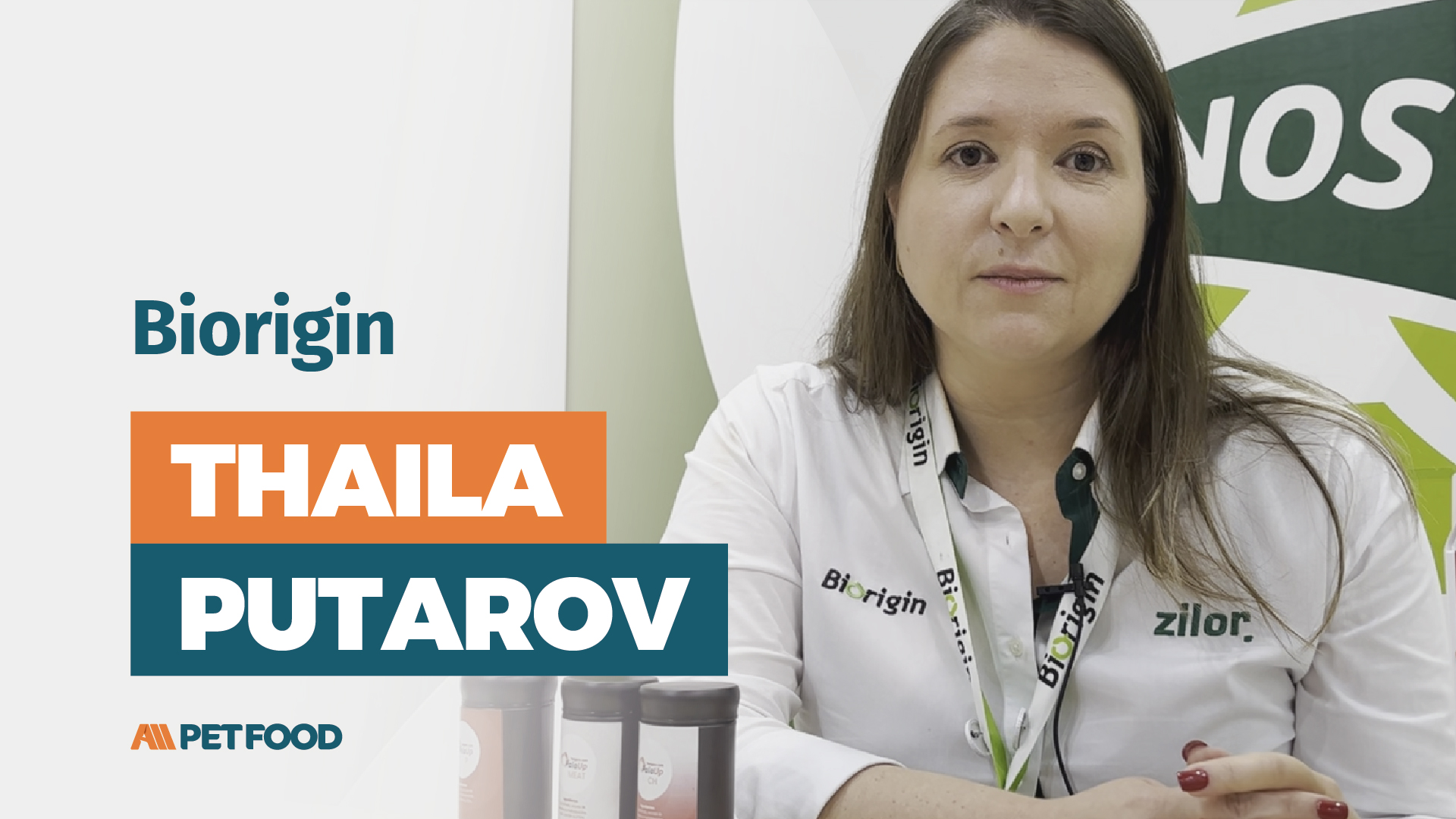 Palatants
Palatants
1+ MIN
04/07/2024
Interview with Thaila Cristina Putarov: PalaUp and Innovations at Biorigin
At FENAGRA, we had the opportunity to interview Thaila Cristina Putarov, Biorigin's Global Business Manager of Animal Nutrition & Health.
Biorigin stands out for producing natural ingredients through biotechnology processes. Having a global presence and industrial operations in Brazil, it offers innovative and safe solutions to the human, pet, and farm animal food industries.
Since its foundation over 75 years ago, the company has developed a strong basis in fermentation processes. Its commitment to innovation is reflected in the total control of the production chain, ensuring product traceability and safety from raw materials to the final product.
PalaUp: Intensifying Pet Food Flavors
Biorigin presented its new product at this event: PalaUp is an innovative solution that naturally intensifies pet food flavor, providing specific flavor notes, such as umami, meat, and roast chicken.
PalaUp stands out as a glutamic acid source, offering intense flavors that can be used in various ways. This adaptability allows PalaUp to mix with other ingredients, improving pet food.
Source: All Pet Food
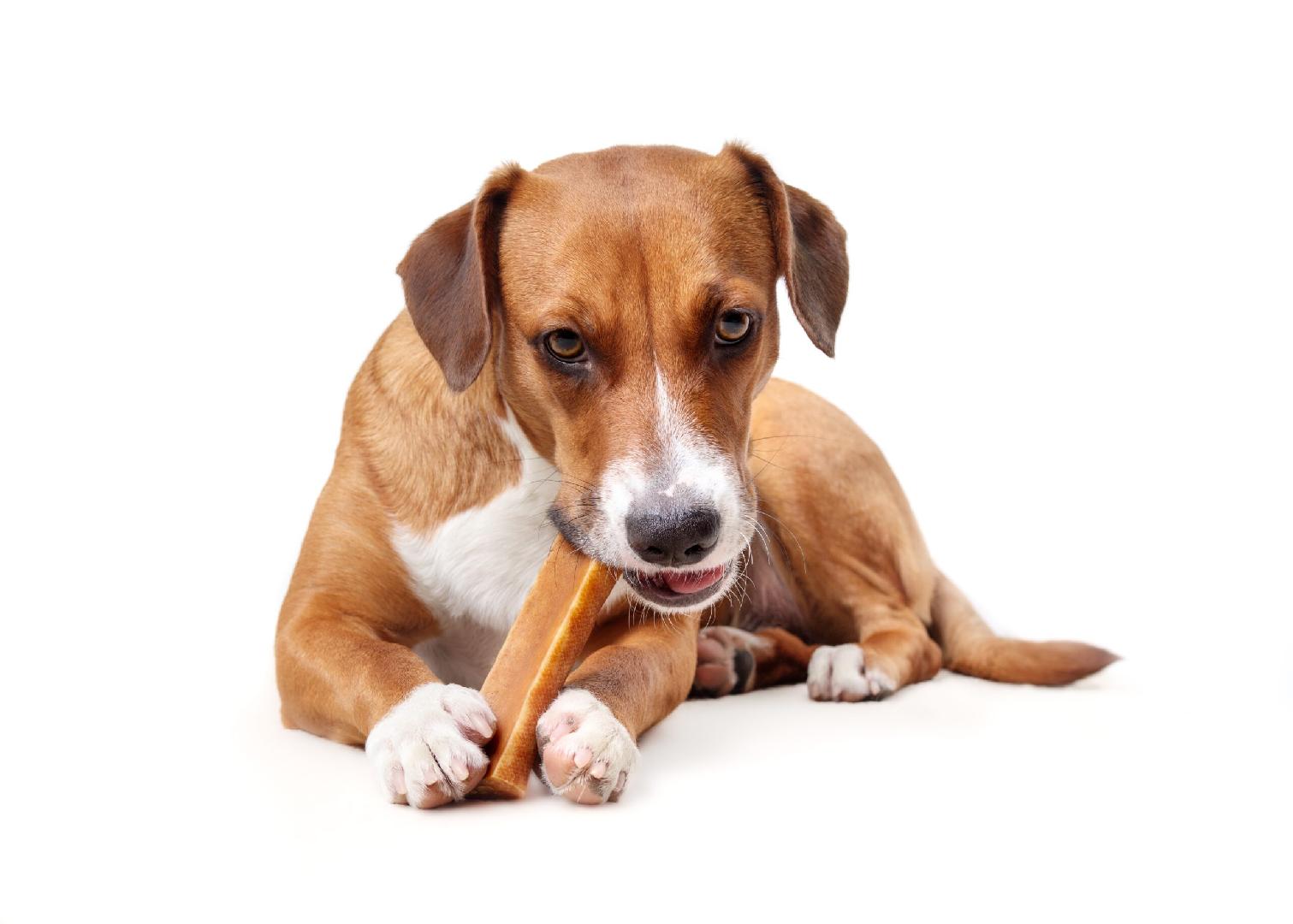 Micro Ingredients
Micro Ingredients
1+ MIN
02/07/2024
Natural ingredients in Petfood: Glycerine replacement with AMN CarryMoist®
The replacement of glycerine with a clean label ingredient has been, for a long time, a topic of concern for Petfood manufacturers. Glycerine, also known as glycerol, is a chemical compound derived either from vegetable oils or from animal fats, and is used as a technical aid in Petfood since it confers plasticity to semi-moist pet foods and treats. AM Nutrition aimed to evaluate CarryMoist®, pre-gelatinised Pea Starch Concentrate as a replacement of glycerine in a formulation of semi-moist dental sticks. In the formulation of the product, different plant proteins were used such as wheat gluten, corn gluten and AMN Pea Protein Concentrate. The carbohydrates evaluated consisted of pre-gel wheat, pre-gel corn, pre-gel rice and CarryMoist® (pre-gel pea starch by AMN) The study was run at the Research facilities of Passion4Food, Ålgård, Norway. Results indicated that glycerine can be totally replaced with CarryMoist®. The functional properties of the sticks may change in terms of springiness, but no differences were found in terms of chewiness and overall elasticity. By addition of AMN Pea Protein Concentrate, the external appearance, texture and colour of the sticks changed into a 'jerky-like' appearance which can be considered as a positive attribute in the treats. Our special thanks to Milka, Damir Tesla and Zahra Salimi for the dedicated work done in this study. Source: AM Nutrition
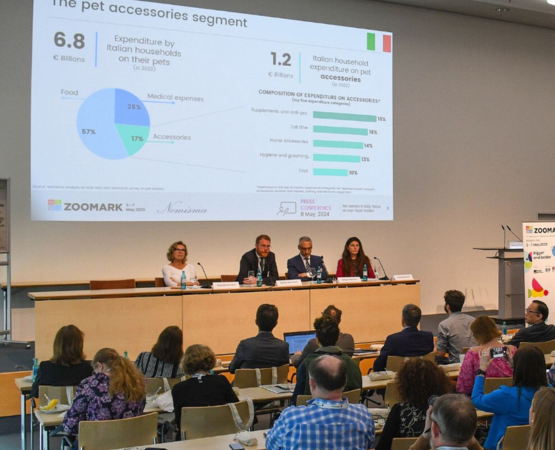 Market Information
Market Information
4+ MIN
28/06/2024
Non-food’s role in the pet market
The initial results of the research conducted by Nomisma for Zoomark reveal the purchasing habits of pet owners in Italy for products in the non-food sector, including supplements, anti-parasite products, accessories, toys, hygiene products and cat litter. Supplements and anti-parasite products are the most frequently purchased items in the non-food segment: 69% of owners bought these products over the past year. Over 60% of Italian pet owners spent money on other home accessories, such as kennels, cages, food or water bowls and do-it-yourself pet care, hygiene and grooming products. 54% purchased toys for their four-legged friends, while 38% bought or replaced leads, collars or harnesses in the past 12 months. The majority of owners allocated a maximum budget of €100 for all categories in the non-food pet sector over the past 12 months, while 16% of pet owners said they spent over €300 on electronic equipment alone. High-spending pet owners 32% of the sample surveyed by Nomisma are considered high-spending pet owners: people who reported spending an above-average amount on pet accessories. For this category of consumers, the decisive factor when it comes to choosing to purchase a certain accessory is how much they know and trust the brand. The majority of high-spending consumers have a lifestyle defined as "seeking luxury": in other words, they place most emphasis in their purchasing behaviour on an object's appearance and the personal gratification the pet owner receives as a result of the purchase. These are 'Premium' consumers, who pay a lot of attention to products' overall quality, uniqueness and originality, their materials or textiles, and their durability, design and sustainability, but always focused on ensuring the best for their pet and protecting their wellbeing. From a social and demographic perspective, the proportion of high-spending pet owners is the greatest in the 30-45 age category and among households with no children. This type of consumer prefers to purchase goods online. Nomisma's analysis for Zoomark also identifies the parts of Italy where non-food spending is concentrated. The regions where households spend most on accessories are Lombardy, Lazio, Emilia-Romagna and Tuscany; these four areas account for over 60% of the country's overall spending on the non-food pet sector (around €280 million). Non-food purchasing channels Turning to purchasing channels, 37% of the sample stated that they prefer to shop for pet accessories in specialised physical shops, and especially large pet shop chains. main strength of the specialised physical channel named by survey participants was the option to see and test the products in person. They also appreciate the shops' proximity to their home and the opportunity to discuss and ask salespeople for advice and information. However, 35% of those interviewed by Nomisma prefer online purchases: 19% predominantly on generalist websites like Amazon, and 16% on sites dedicated solely to pet products, or the websites of pet shop chains. Online channel users are mostly looking for the cheapest price and a wider range of products. Another decisive factor is the possibility and ease of comparing different products on several websites before purchasing online. 16% of owners say they focus most of their spending in the large-scale retail trade, due to the convenience of being able to do their weekly shop at the same time, followed by the variable of price and the proximity of the stores to their main place of residence. Only 7% of pet owners purchases pet accessories in discount stores and big markets. Purchasing drivers What are the main drivers of Italian pet owners' purchasing choices? The Nomisma survey reveals that personal taste and the price of products are the most important considerations, but sustainability is also an increasing concern for Italian pet owners, with 46% of interviewees stating they will place a greater emphasis on these aspects in the next 2-3 years. This creates a challenge for the entire non-food segment, encouraging accessory manufacturers to create products with a smaller environmental footprint and to pay more attention to their internal and external social sustainability practices. Knowing the brand or shop is also a major purchase driver for 20% of Italian pet owners. Mattia Barchetti, Head of Market Intelligence at Nomisma, said: 'Nomisma's research for Zoomark predicts that spending in the non-food categories will grow over the next 2-3 years, and particularly spending on cat litter, supplements and anti-parasite products, and electronic equipment. The latter is expected to grow substantially, mostly due to the technological advances that are bound to impact this industry in the near future. More modest growth is predicted for leashes and muzzles, transport accessories, clothing and toys.' 'The indicators point to a positive macroeconomic situation', Barchetti continued, 'with the surge in inflation returning below the 2% threshold in the final quarter of 2023. Increases in contractual wages, coupled with rising employment rates and unemployment rates at historic lows, will give further impetus to a sector that has performed extremely well in recent years, despite the uncertain economic situation.' The outlook for household spending is optimistic, and this will certainly have a positive impact on the constantly expanding Italian pet care sector. About Zoomark Zoomark is the B2B pet food and pet care trade show scheduled for May 5th-7th 2025 at BolognaFiere. Returning for the 21st time, it provides a global meeting point for the industry and distributors in the pet sector, and is the ideal place to forge new relationships, stay up to date and share ideas with a global audience seeking new partners and business opportunities. Source: Zoomark
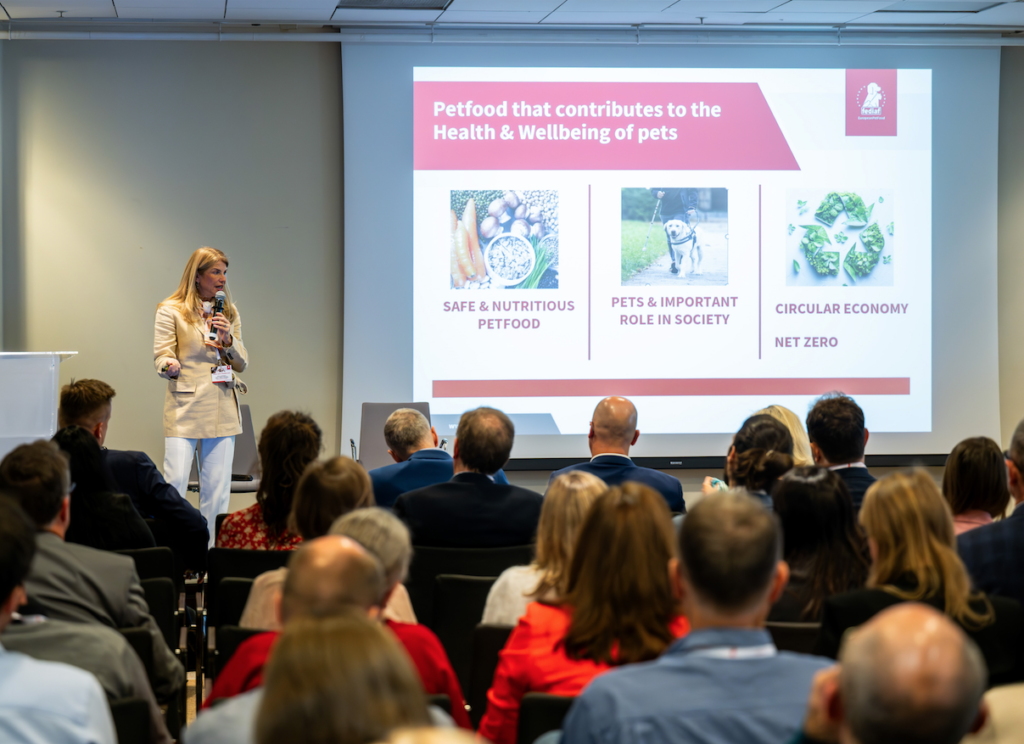 Market Information
Market Information
2+ MIN
27/06/2024
FEDIAF EuropeanPetFood hosts Annual Congress in Poland, Spotlighting Key Ingredients and Additive Authorisation Process
After welcoming remarks from FEDIAF's President, Rosa Carbonell, and Secretary General, Sonia Franck, Marta Koncewicz and Pawel Mackiewicz, from Poland's General Veterinary Inspectorate, provided a welcome to Poland and valuable insights into potential enhancements to the authorization process. Paola Ferraro, Legislative Officer DG SANTE, Food Hygiene, Feed and Fraud, European Commission, then outlined the 'risk management' process and Joerg Seifert, Secretary General of FEFANA (the EU Association of Specialty Feed Ingredients and their Mixtures), shared his perspectives on the future of the reauthorization process.
Representatives from EFSA (European Food Safety Authority), Matteo Innocente, Scientific Officer, FEEDCO Unit, and Oscar Gonzalez, Scientific Coordinator, FDP Unit, offered essential guidance on their services, submission procedures, and renewal processes.
Following the presentations, an engaging Q&A session moderated by Matt Elliot, Regulatory Affairs Manager at Mars Petcare Europe and Chair of FEDIAF's Additives Working Group, provided attendees with an opportunity to delve deeper into the discussed topics.
Matt Elliott, Paola Ferraro, Joerg Seifert and Laura Payo (Argenta)
Reflecting on the event, Rosa Carbonell, FEDIAF's President, confirmed, 'It was an enlightening afternoon with fantastic speakers, and the interactive Q&A session highlighted the importance of safeguarding pet food ingredients for the future. In the Pet Food Industry, feed additives play a critical role, underscoring the necessity of an easily navigable authorization process to ensure the production of safe, balanced food for Europe's 352 million pets.'
Jean Grunenwald, Chairman of the Management Board of POLKARMA, our hosts in Poland, concluded the Annual Congress with a presentation that featured invaluable insights and top tips for our guests.
Rosa Carbonell then thanked FEDIAF speakers, members and guests: 'The FEDIAF Annual Congress has been a fitting conclusion to my second year as President. I look forward to tackling the challenges and opportunities that lie ahead in the coming year. I encourage everyone to review FEDIAF's Annual Report and learn about the critical work undertaken to safeguard and advance the European Pet Food Industry – and more.'
Fuente: FEDIAF
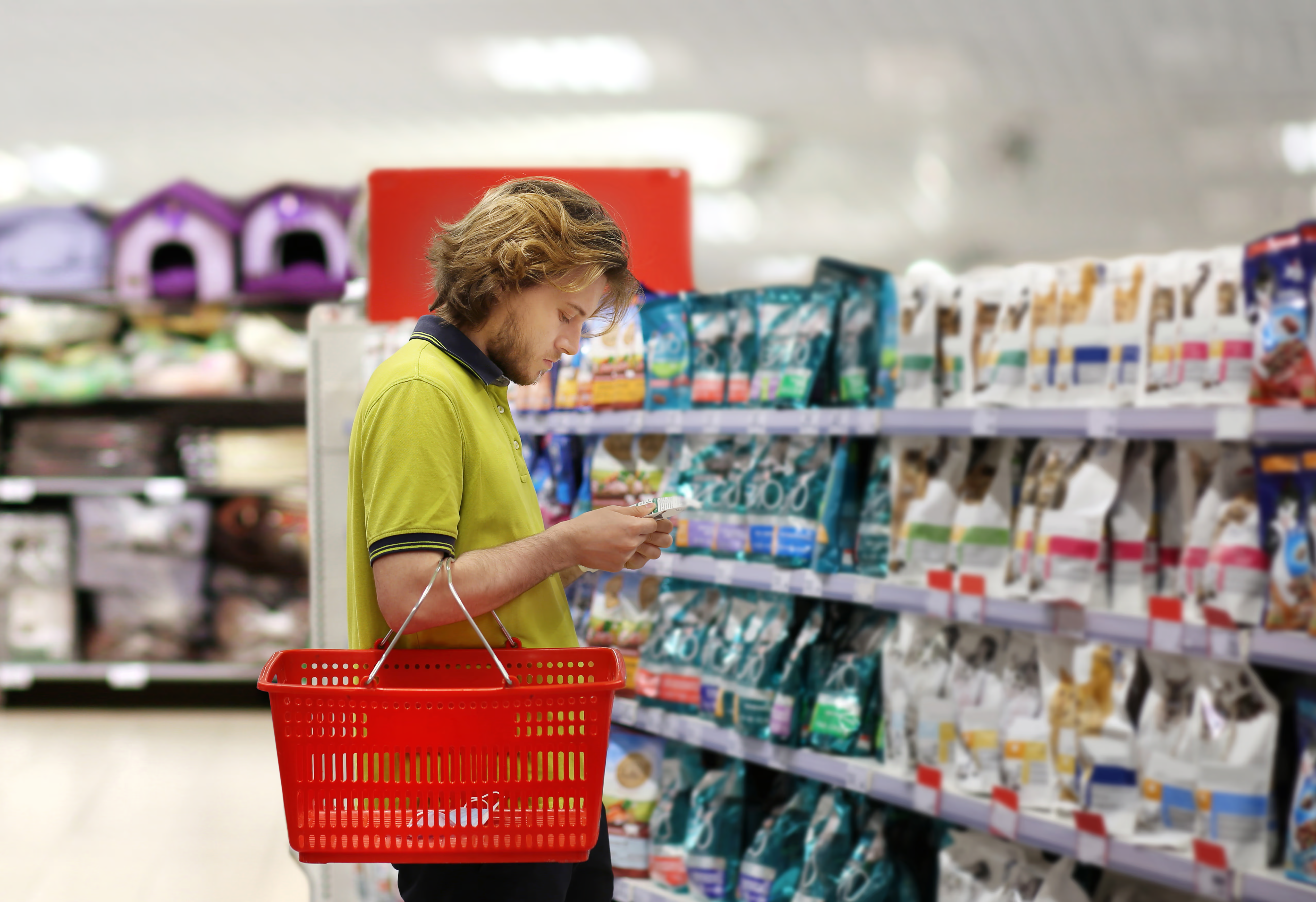 Market Information
Market Information
5+ MIN
26/06/2024
Por María Candelaria Carbajo
Pet Retailing, the most adaptable and changin sector in the industry
With the emergence of new business models, such as personalized foods, subscription models, and online shopping, the old market players must look for a new way to organize themselves and keep growing. That is the case with retail stores, for instance. Currently, the market share of traditional retail is expected to decrease, especially that of pet sector, and this is mainly due to the great competition presented by the availability of food in online hypermarkets and other mass channels. But it's not all negative news! In this article, we do a small analysis and share 3 insights in which retailers can find great advantages to differentiate themselves in the pet food market. The growing importance of the brand-retailer relationship Historically, this type of seller (and not only those related to the pet food industry) fulfilled the role of quickly and closely providing certain products to consumers. The problem with this role is that today, it is much better served by what we know as online businesses. Furthermore, in the case of physical purchases, it is also usually more convenient to go to hypermarkets where we buy products from different areas and needs in the same place. Now, there is a fundamental factor that is not present in large stores or online shopping: trust. Surely, we have all heard, at some point, or even had firsthand experience, of a 'reliable' seller that we keep choosing even when there are other, more comfortable options. Trust in the retailer still exists. The challenge is to not only build it over time (something very hard nowadays, with the amount of local movement that exists) but with attention and, above all, knowledge of what is being sold. In this sense, brands that distribute their products to individual merchants can influence them exponentially as long as they know how to attend them in the sale. 3 key factors to grow and sustain as a retailer in the current pet food industry We already know that humanization and premiumization trends are revolutionizing the industry. This is leading, mainly, to a growing interest in the function of food, which, evidently, generates an impact not only on the type of product consumed but also on the importance of how it is presented and sold. In this sense, here we share 3 factors that can help retailers find their place in this new market: Omnichannel opportunities With the pandemic, traditional retailers were forced to adapt themselves or die to remain competitive in an environment that began to demand new forms of consumption and facilities, such as online shopping and collection points, contactless delivery, or even placing orders via daily use platforms such as WhatsApp. Independent pet stores must look for solutions to avoid losing customers to pure e-commerce and other larger establishments, and for this, the omnichannel strategy is a great opportunity. In addition to having physical and local space, expanding the service through other digital or consumer service strategies such as automatic replenishment, free shipping, and home delivery at convenient times can be attractive alternatives. This approach to pet food sales is already allowing those brands that decide to work closely with their retail partners in the physical space to see an evolution in their relationships. Education We previously mentioned that trust is a deciding factor in why people choose their retailers, even when it is not the best fit for their habits and routines. Nowadays, we know that companies can help their favorite merchants build that trust. How? Ensuring they can effectively represent the brand. One of the main elements of the brand-retailer-consumer relationship is making sure sellers understand what the products are about. This benefits all parties: the company (or its product lines) is represented by someone who knows its strengths, benefits, and advantages, the merchant creates the long-awaited trust with the consumer, and the consumer has his chosen person to make decisions about the pet's diet and well-being with the help of an expert. Providing these types of sellers with easy access to marketing and educational material about a brand's star products is essential to facilitate their access to training so that they can sell not only more but also, especially, better products. Thus, the seller's advice is no longer based solely on feeling or sales but also has real foundations with verified information provided first-hand by the brands. In this way, we can cover a very important sector of pet owners: those who are concerned and actively interested in knowing about the diet of their dog and cat children and seek to make decisions with the most accurate and scientific information possible. Artificial intelligence There is a lot of talk today about implementing Artificial Intelligence in businesses, but few pet retailers have included it in their businesses, and this is mainly due to a lack of knowledge about how it can help them: Long-term cost savings Initially, an AI tool may be more expensive to implement. However, over time, it can bring huge savings. Efficiency is a fundamental aspect of money management, and being able to face customer needs more quickly and effectively surely brings greater efficiency, both in human and financial resources. This can be seen with predictive tools for the possible necessary stock or the type of customer profile, for instance. Content creation One of the keys to retail businesses is creating your own community to exploit its ability to generate much more trust and closeness than large businesses and establishments. Having a presence on social networks is essential, but it is not always possible due to time, lack of resources, or knowledge. In this sense, AI is a fast and efficient solution for creating content, from creating ideas for posts on social networks to creating unique images with products for advertising campaigns or special offers. Today, an AI tool like CHAT GPT can make us a complete content calendar with specific texts and characteristics, and we will only have to make sure to give the special touch of our brand voice so that they sound authentic and really connect with our potential and customer community. Conclusion The retailing sector, contrary to popular belief, is not dead. There is no doubt that it must adapt to the new needs and consumption habits of pet owners. But, with perseverance and predisposition, participants will be able to carve out their own market niche if they are able to find the best way to enhance what has always differentiated them in the market: closeness and trust with consumers. Source: All Pet Food Magazine
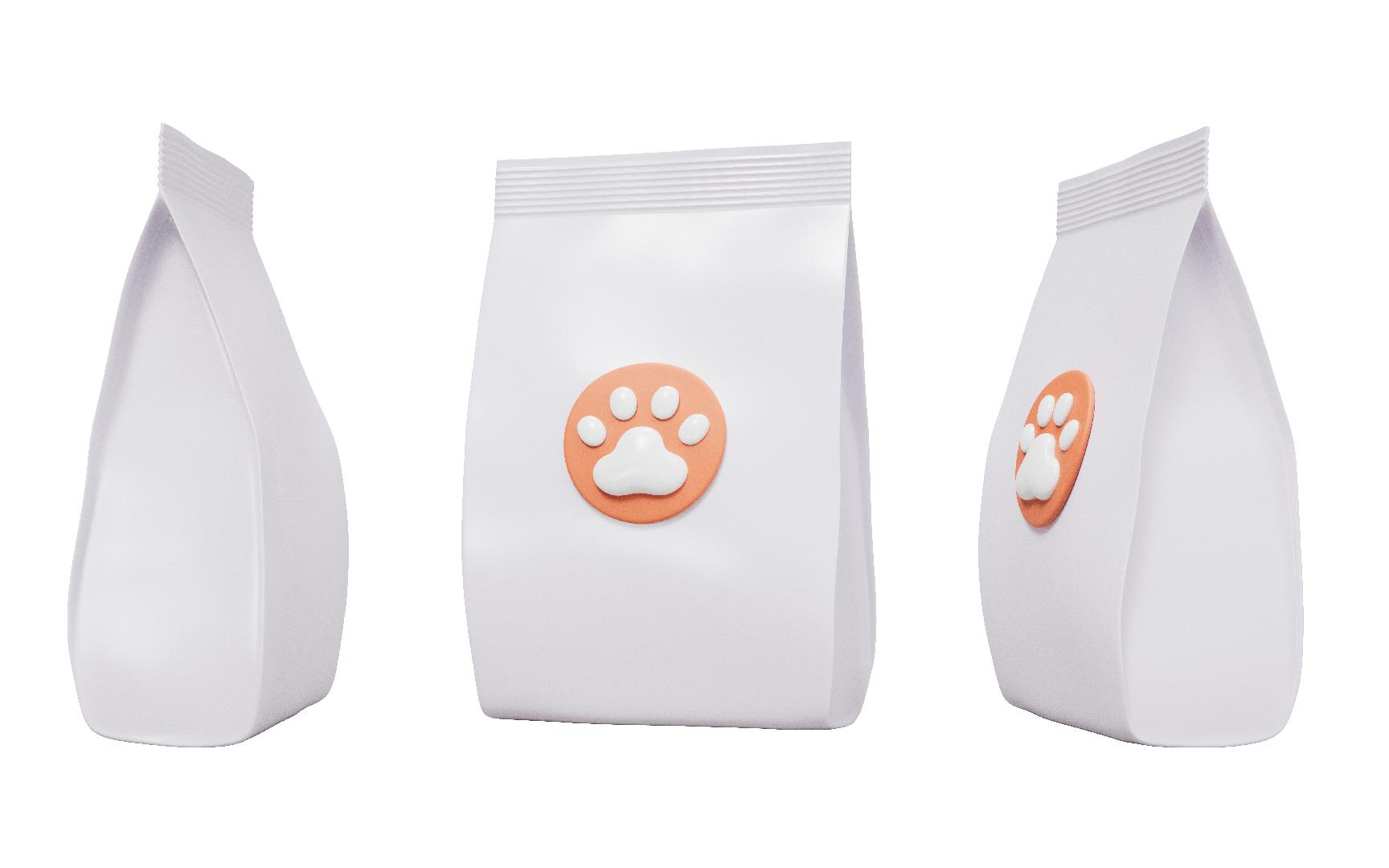 Market Information
Market Information
3+ MIN
25/06/2024
Por Armando Enriquez de la Fuente Blanquet
Key points of a brand ecosystem
The most popular definition of 'brand' is that of Philip Kotler, who indicates that it is 'a name, a term, a sign, a symbol, a design or a combination of all these elements, which identifies the manufacturer or seller of a product.' or service and that differentiates it from the competition.' Furthermore, let us keep in mind that today, a brand combines perceptions and emotions that consumers associate with the product.
Here, we could go into the details of 'branding,' where we seek to create a unique and distinctive identity for pet food (image 1). This identity is built through visual elements, such as the logo, colors, fonts, and other graphic elements.
Brand building in the pet food industry is essential to differentiate yourself in a highly competitive and constantly evolving market. The market demands innovations in ingredients, manufacturing processes, and nutritional approaches to meet pet owners changing needs and preferences.
Knowing the ecosystem leads to brand success
The term "pet food ecosystem" refers to the set of companies, organizations, and activities related to the production and marketing of pet food. This ecosystem is considered from food manufacturing to product distribution, sale, and consumption
Key elements within the pet food ecosystem
Manufacturers that produce foods or products specifically designed for pets, such as dry foods, wet foods, snacks, supplements, and more. This link must have a solid quality system, such as physical, chemical, sensory, and microbiological controls that ensure the high quality that our food brand supports. Care in adding, particularly micro-ingredients, must be very precise to fulfill what a high-quality brand promise.
Suppliers that supply the ingredients necessary for the manufacture of pet foods, as well as protein sources, cereals, vitamins, minerals, and additives. It is important to have certified suppliers since the uniformity of the ingredients guarantees good quality food. I have already talked about other issues about the importance of micro-nutrients or micro-ingredients (vitamins and minerals): selecting the correct forms and sources will give us stability and bioavailability in our final product.
Companies that are responsible for distributing pet food to retail stores, veterinarians, and other points of sale. Work with companies that take care of product management and good condition since the latter is the image and fundamental part of our brand.
Chain pet supply stores, supermarkets, online stores, and other places where consumers buy pet food and supplies. These warehouses must offer adequate conditions for the conservation and good condition of the products.
Veterinarians can recommend and sell specific pet foods based on each animal's nutritional needs. Training for the veterinary community is important so that they know the value proposition of our brand and apply it for the benefit and needs of the pet.
Pet owners who purchase and use products within the pet food ecosystem to feed and care for their animals. Pet parents play a very important role in this ecosystem because it is up to them to ensure that dogs or cats consume the correct food and in the correct amount for the pet's health and well-being. Communication with pet owners, usually through tags, should be clear and understandable to reduce potential errors.
Companies and institutions that carry out research and new food development, nutritional formulas, and technologies related to pet feeding. This is a very broad and key area for the advancement of precision nutrition for dogs and cats because it ranges from the determination of the requirements of each nutrient, new materials proposals, nutrient optimization, and new production processes, making them more efficient and sustainable.
Government entities and organizations that establish standards and regulations to ensure the safety and quality of pet foods. The regulatory process is basic and inevitable to give certainty to pet parents that balanced foods will not cause health problems in pets.
Thus, the unique and distinctive identity of the balanced pet food, or brand, is built through the collaboration and participation of all elements of a pet food ecosystem. Let's remember that a brand combines perceptions and emotions, so each link in the chain has a valuable contribution that will make our product successful.
Source: All Pet Food Magazine.
 Manufacturers
Manufacturers
2+ MIN
24/06/2024
Enifer raises €36 million to introduce fungi-based solutions to the pet industry
Enifer received a capital injection of €36 million ($39M) for the construction of a facility to produce its proprietary mycoprotein PEKILO, a sustainable fungi-based protein for human and pet food applications.
The factory will be located in the municipality of Kirkkonummi, 30 km from Helsinki, and is expected to be fully operational by the end of 2025. The annual production capacity is expected to reach 3,000 tons of mycoprotein or 500 kilograms per hour.
Headquartered in the Finnish city of Espoo, the start-up states that mycoprotein is 'the missing ingredient' for a more sustainable food chain and that it aims to make it 'a cornerstone of protein supply' by opening more factories down the line.
Pet application
This recent funding will enable Enifer to enter the pet food market with its mycoprotein, which has already been approved for animal nutrition in Europe.
According to Co-Founder and COO Joosu Kuivanen, the ingredient has a 'differentiating factor' from plant and insect proteins due to its amino acid composition and fungal beta-glucan properties that aid high digestibility and well-being in pets.
To expand its market reach, the company will seek regulatory approval in other geographical regions, such as the US.
'We are already planning larger production facilities that would focus exclusively on producing PEKILO® mycoprotein ingredients targeted to animal nutrition, which would enable us to lower our production costs and offer even more competitive prices,' notes Kuivanen.
The ingredient, made of 60% crude protein, will be available in a shelf-stable dry and powdered form with a neutral taste for use in dry and wet dog food products.
Enifer previously received a €12 million ($13M) recycling and reuse investment grant from the NextGenerationEU program by the European Union.
Source: GlobalPETS
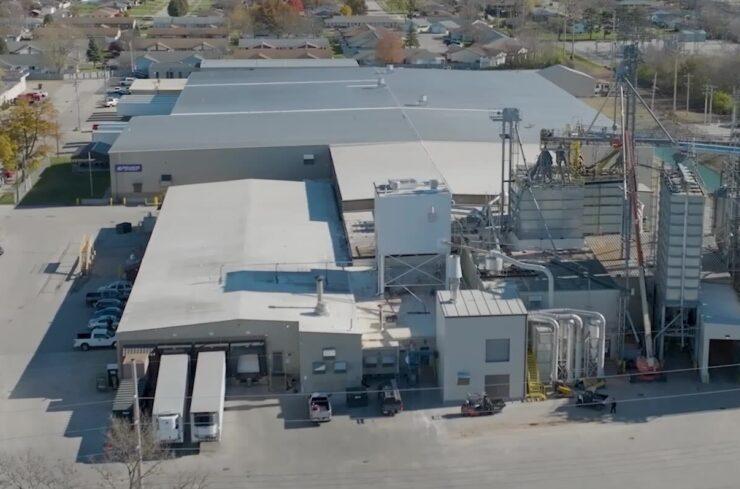 Market Information
Market Information
1+ MIN
21/06/2024
United Petfood enters the US market with purchase of a Wellness Pet facility in Indiana
This purchase represents a landmark moment for United Petfood as it marks the company's first manufacturing plant in the United States.
United Petfood has long been a prominent player in the pet food industry through its extensive export activities. This strategic move to establish local production in the U.S. signifies a pivotal step in solidifying its presence in this key market.
"We are excited to take our first steps into the U.S. market with the acquisition of the Mishawaka facility. This acquisition allows us to better serve our American customers with locally produced, high-quality pet food. We see tremendous opportunities for growth and collaboration and are excited about the potential for synergies between our operations across different continents', Elodie Fleury, United Petfood Vice President Americas.
Regarding the sale, Reed Howlett, CEO, Wellness Pet, said, 'We're pleased United Petfood will assume ownership of the Mishawaka facility. This will ensure a smooth transition for our team members who have been working at the facility and part of the Wellie family for many years. We are proud to have been Mishawaka community members for almost two decades.' Wellness Pet acquired a substantially larger facility in 2022 in Decatur, Arkansas which is well-suited to support the company's growth in the near and medium term."
If you want more information, visit their website HERE.
Source: United Petfood
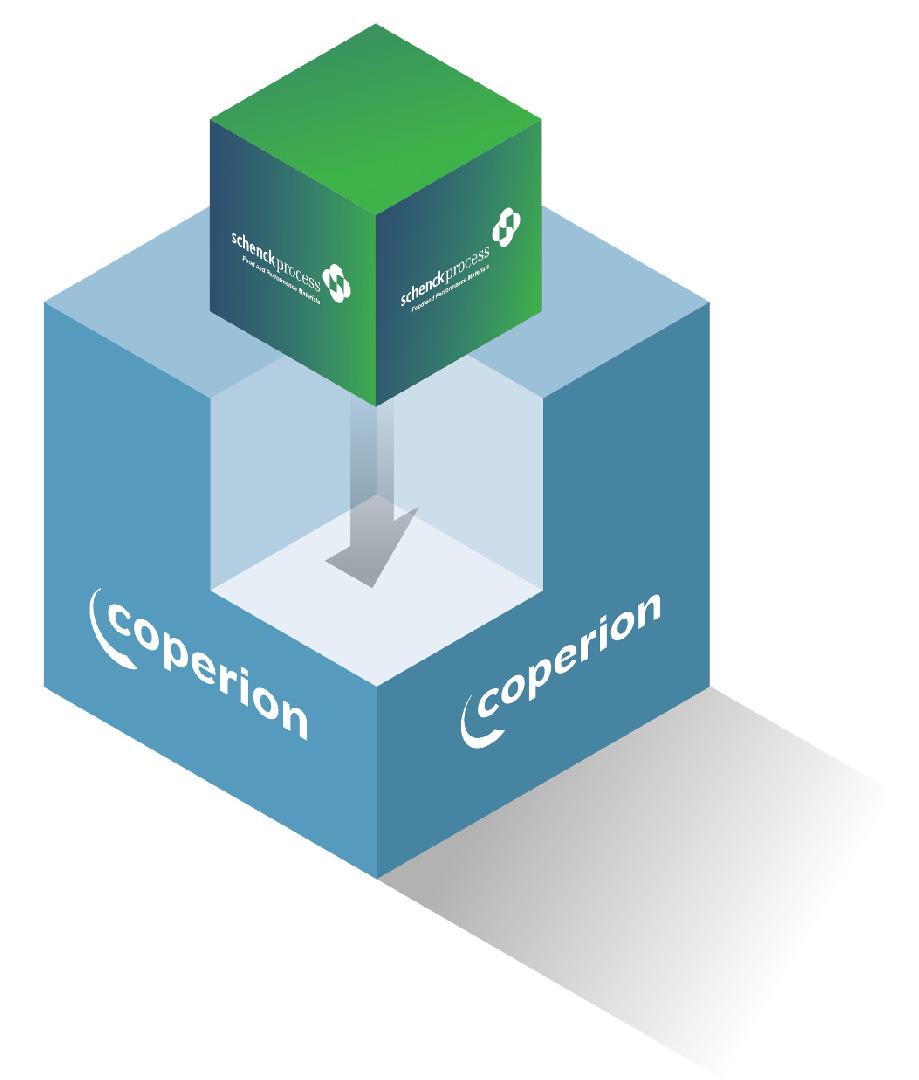 Market Information
Market Information
3+ MIN
20/06/2024
Schenck Process FPM is Becoming Coperion
Following its September 2023 acquisition by Hillenbrand (NYSE: HI), Schenck Process Food and Performance Materials (FPM) is transitioning its name and brand to Coperion. The full legal change to Coperion will be completed by August 1, 2024. Coperion is an operating company of Hillenbrand with 140 years' experience in some of the world's most critical processing industries. Schenck Process FPM has contributed an integral part to its divisions, which support processing solutions for manufacturing in polymers/performance materials, food, health & nutrition and aftermarket sales & services. Schenck Process FPM expertise, team members, manufacturing sites, test and innovation centers, and technologies remain in place. This includes flagship brands such as RBS, Stock, Baker Perkins, Kemutec and Mucon. Customers can experience a seamless transition bolstered by more resources and broader technology capabilities available through Coperion. 'The acquisition of Schenck Process FPM in 2023 has been an essential step for the development of Coperion toward a more diversified company and an expanded footprint. With the transition of the FPM brand name under Coperion, we take the next step in our journey,' said Ulrich Bartel, President of Coperion. 'Aligning more closely with Coperion reflects a significant opportunity for us to combine our strengths and offer customers access to a broader portfolio of solutions, technologies and services,' said Matthew Craig, Vice President and General Manager, Schenck Process FPM. 'This wider range of complementary technologies and increased scale makes us even more capable of delivering value.' The evolution to the Coperion name and brand begins with the schenckprocessfpm.com digital domain shifting to coperion.com. The company's website and emails, including those from technology brands such as Baker Perkins, will change. The new website can be found at coperion.com/fpm. About Coperion Coperion (www.coperion.com) is a global industry and technology leader in compounding and extrusion systems, sorting, size reduction and washing systems, feeding systems, bulk material handling and services. Coperion develops, produces, and services plants, machinery, and components for the plastics and plastics recycling industry as well as the chemical, batteries, food, pharmaceutical and minerals industries. Coperion employs more than 5,000 people in its three divisions, Polymer, Food, Health & Nutrition, and Aftermarket Sales & Service, and in its over 50 sales and service companies worldwide. Coperion is an Operating Company of Hillenbrand (NYSE: HI), a global industrial company that provides highly-engineered, mission-critical processing equipment and solutions to customers serving a wide variety of industries around the world. To learn more, visit www.Hillenbrand.com. About Schenck Process FPM Schenck Process Food and Performance Materials (FPM) – a brand of Coperion which is part of Hillenbrand Inc., engineers cutting-edge technologies and solutions across the bulk material handling spectrum. Our teams deliver complete solutions for your real-world needs, based on deep process and engineering expertise. We specialize in precision solutions for pneumatic conveying, milling, dust collection, sifting, weighing, and feeding. Schenck Process FPM and Coperion boast a streamlined business model which enables us to deliver high-performing systems for customers in every corner of the world, supported by an extensive collection of services. coperion.com/fpm Source: Schenck Process
 Extrusion
Extrusion
2+ MIN
18/06/2024
CPM IDAH presents the TwinTech extruder for the Pet Food and Aqua Feed market
In March, CPM IDAH presented the clearest evidence of that collaboration at the Victam Asia 2024 show: the new TwinTech twin-corotative screw extruder. This TwinTech extruder updates IDAH's well-known twin-screw extruder with innovations and design techniques from CPM Ruiya Extrusion, along with the long-lasting gearbox and energy-efficient motor from the renowned CPM equipment. Collaborative development "This extruder is the result of collaboration between the CPM brands IDAH (Taiwan) and Ruiya Extrusion (China)," says Ezequiel Villar, Business Development Manager for Latin America at CPM IDAH. "We combined their knowledge of design, robustness, and profitability with our knowledge of food production to introduce a new technology." The CPM gearbox and motor also offer real advantages in the TwinTech. 'The gearbox allows rotational speeds of up to 600 RPM, making it easier to process heavy loads and increase performance, along with a proven long service life,' says EV. TwinTech's CPM motor is a permanent magnet synchronous motor (PMSM), which offers significant advantages: "The CPM motor requires less energy," says EV. "It also reduces size and noise emission by approximately 30%." Combined, these innovations create a market-leading twin-screw extruder that delivers capacity, value, and reliability. TwinTech details The TwinTech extruder offers a range of new features developed by both IDAH and partner brands within CPM: Improved Gearbox technology: Powered by CPM's renowned and proven gearbox technology, the TwinTech extruder features a high-speed, heavy-duty gearbox capable of a rotational speed of up to 600 RPM. This allows for increased processing capacity and efficiency. Energy efficient design: The TwinTech extruder is powered by a permanent magnet synchronous motor (PMSM), which is highly efficient and approximately 50% smaller than traditional air-cooled motors. This motor design contributes to energy savings, reduced noise pollution (up to 30% less), and the option of water cooling to maintain the motor. Density control unit: An optional feature, the density control unit, allows TwinTech to produce different food types using the pressure inside the cutting chamber. This versatility allows manufacturers to produce a wide range of feeds with a single machine. Advanced preconditioning and cooking systems: These systems are designed to improve the cooking process by ensuring effective steam integration and retention, resulting in greater processing efficiency and product quality. Our CPM IDAH TwinTech extruder is a guaranteed solution to increase product quality levels with lower energy and wear costs. Regionally, we see an increase in consumption and specific growth in premium food by users, which generates the responsibility of the entire chain to have efficient solutions given the limitations that our clients face with the increase in ingredient, energy, and overhead costs. But despite these challenges, high-quality products are still expected to be supplied to a very competitive market. The TwinTech extruder is a cutting-edge solution that combines the experience of IDAH and the technology and robustness of CPM, offering the pet food industry a reliable and efficient tool. By: CPM IDAH Source: All Pet Food Magazine
 Cats
Cats
7+ MIN
14/06/2024
Catering to cats
The natural cat food and treat category has taken a positive turn as consumers focus more on their felines' distinct needs and preferences. "So many more people are catering to their cats and recognizing that they are different, not like dogs, and they have unique needs that finally are being addressed," said Diane Dewberry, owner of The Healthy Animal, a retailer in Pembroke, Mass. The result has been a large cat-owning clientele willing to spend money to ensure their cats get quality food and nutrition, she added. "The new [customers] coming in don't care what they spend; they want the better food because their cats like it," Dewberry said. With this desire for quality food and nutrition, consumers are turning to natural foods and treats. People's embrace of clean eating for themselves may be an influence as well. "For cats, the emphasis in the natural category tends to be on clean eating—choosing minimally processed, real foods that provide maximum nutritional benefits," said Heather (Acuff) Mendoza, director of research and development for Nulo Pet Food, a manufacturer in Austin, Texas. Not only do consumers realize that cats need quality nutrition for their overall health, but owners also want and need foods that address their pets' most common needs, said Janet Scott, owner of Rawz Natural Pet Food, a manufacturer in York, Maine. "The current trend favors natural food options offering solutions, such as recipes high in meat, low in carbohydrates and focused on addressing specific needs," she said. Romina Tasahuaman, store manager for Choice Pet, a retailer in Stamford, Conn., reported an uptick in sales of natural cat foods, especially those that are formulated to address special conditions such as diabetes and urinary tract issues. "When customers find natural foods and try them, and they see their cats have no issues going forward, they stick with that brand," she said. For those less familiar with premium and natural cat foods, guidance is especially welcome. "Unfortunately, not everyone has access to the education or access to people that feed more naturally, and it can be kind of scary to switch over," said Alexandra Dameron, owner of Noah's Natural Pet Market in San Diego. "Most cat owners are told to just feed dry food and wet food as treats occasionally and so are nervous to branch out." This is where independents often set themselves apart with the education and expertise to help cat owners with questions, concerns, information and coaching. "During this age of information, retailers are faced with the challenge of delivering the right information to consumers, on the right platform, at the right time," Mendoza said. "This sets the bar high for retailer education, but when done right, will build trust and rapport with consumers." Industry insiders noted several key training topics for retail associates. The unique nutritional needs of cats. "Cats are different than dogs and have very different nutritional needs," Dameron said. "Cats are obligate carnivores, which means they have no carbohydrate requirement. They need meat, fat, organs and bone to survive and thrive." Product knowledge. "Learn about the products. Read about the products, learn the contents, understand why we have it and what it will do for the cats," Dewberry said. Sourcing for quality. "With the many options available, along with marketing techniques, it can be a bit overwhelming for shoppers to determine which products are the best quality," said Fernando Maluf, vice president of international sales for Natoo Pet Foods, a manufacturer in São Paulo. He recommends knowing where a product is made, what ingredients are in a product and where the ingredients come from. "How and where ingredients are sourced can play a key role in the quality of the product," he added. Engaging with customers. Teaching associates what questions to ask to get more information from customers on their cats' needs and preferences is crucial to helping shoppers select appropriate diets, Dewberry said. Personal experience. "The best education … is having experience with the food or treat in question," Dameron noted. Tips for transition. "We all need to know how best to gently guide a customer to the more natural/alternative categories for their kitties while still honoring the cat's preferences," Dameron said. "We all have to be aware of the ways to start introducing new textures and flavors and the tricks you can use to help a cat want to try something new." Texture trends & flavor preferences Getting cats to eat new foods can be a challenge, as they have a reputation of being finicky for good reason. This is where Dewberry finds sampling to be very helpful. "Texture is a big thing," she said. "Some cats are imprinted on certain textures or smells. We always sample, which is good when companies offer them." Dry foods remain a best-seller. These diets offer a convenience consumers appreciate. For those looking for a natural, grain-free, single-protein dry food option, Rawz Natural Pet Food is introducing Limited Rabbit Recipe for Cats this month. The kibble is made with real rabbit, contains marine microalgae oil (algal oil) and features a freeze-dried raw rabbit coating, Scott said, adding that it is free of eggs, potato, corn, rendered fat, dairy, wheat, soy and canola oil. Limited Rabbit Recipe for Cats "is made with easily digestible ingredients and is a great solution for cats with food sensitivities," she noted. Canned diets have been a feline food staple for decades, and they are very popular in the natural market, with pâté, minced, shredded and stews ranked as top textures, industry experts agreed. At Global Pet Expo in Orlando, Fla., in March, Nulo launched a line of 10 natural, high-meat canned cat food formulas. Featuring diversified textures, the new diets include fine minces, regular minces and flakes. Proteins include chicken, beef, duck, lamb, quail egg, salmon, tuna, crab and prawn, and the canned diets contain organ meats and broth. "Pâtés have been the classic canned food format for decades, but with recent advantages in processing technology, the ability to innovate in this category is almost limitless," Mendoza said. "This line is focused on providing high animal-based protein, flavorful broths, and functional ingredients like pumpkin and inulin to support gut health." Raw and freeze-dried fare are gaining attention in the natural pet food market, retailers said, and many independents reported that they encourage customers to feed these foods. "While frozen raw food is the absolute best way to feed your kitty, some cats won't take to the texture," Dameron said. "Softer freeze-dried and air-dried are becoming more popular for cats, and we are helping educate around why these foods are better than traditional kibbles for cats. "We also are seeing freeze-dried and air-dried treats being extremely popular," she added. For shoppers ready to make the switch to raw, Dewberry uses freeze-dried foods and treats as an effective bridge. "Most cats can't go straight from dry to raw, and it takes cats time," she said. "We always try to slowly transition them from dry to the freeze-dried, then canned and then raw." While customers are less reserved about spending money on quality cat foods, some retailers have found rising prices are affecting raw purchases. The market for raw cat food and treats has certainly grown, Tasahuaman said, but "price increases have made it harder for some to keep feeding raw. Many use raw as a topper or a treat because of the expense." Toppers in general are gaining popularity as a simple way to add more natural nutrition into any cat's diet, insiders said. This September, Natoo plans to unveil meal toppers for cats in Chicken & Sweet Potato and Salmon & Sweet Potato flavors. The single-protein treats are similar to a wet food, with shreds of chicken or chunks of fish in a broth, and they contain no byproducts, preservatives, or artificial colors or flavors. "Perfect for cats of all ages and sizes, they can be enjoyed alone or mixed with dry food for added nutrition," Maluf said. "Made with limited ingredients, they're easily digestible and great for pets with sensitive stomachs or allergies. Plus, they are rich in folic acid, biotin, antioxidants and fiber, and are fortified with essential vitamins A, B12 and D3." In addition to texture, flavors and palatability are key considerations. Chicken and fish remain the most common and popular proteins in cat food and treats, according to insiders. "Our poultry- and fish-based formulas tend to be our Nulo fan favorites and top-selling proteins for cats," Mendoza said. "We're also seeing increased interest in red meat options, such as beef and lamb." For owners who prefer feeding a rotational diet, more products are now available in a variety of flavors and proteins, Scott said, such as turkey, duck, rabbit and pork. Offering lots of protein options can be beneficial to cats, Dameron noted. "We encourage a lot of variety as it helps to prevent the stereotypical 'picky' cat, so we encourage customers to explore more novel proteins and diversify their cats' foods and treats," Dameron said. "If you understand your cat is a predator and carnivore, you can focus on the ways they play and hunt to determine what they might like. Red meats if they are a ground hunter and poultry if they like to fly through the air." Source: Pet Product News
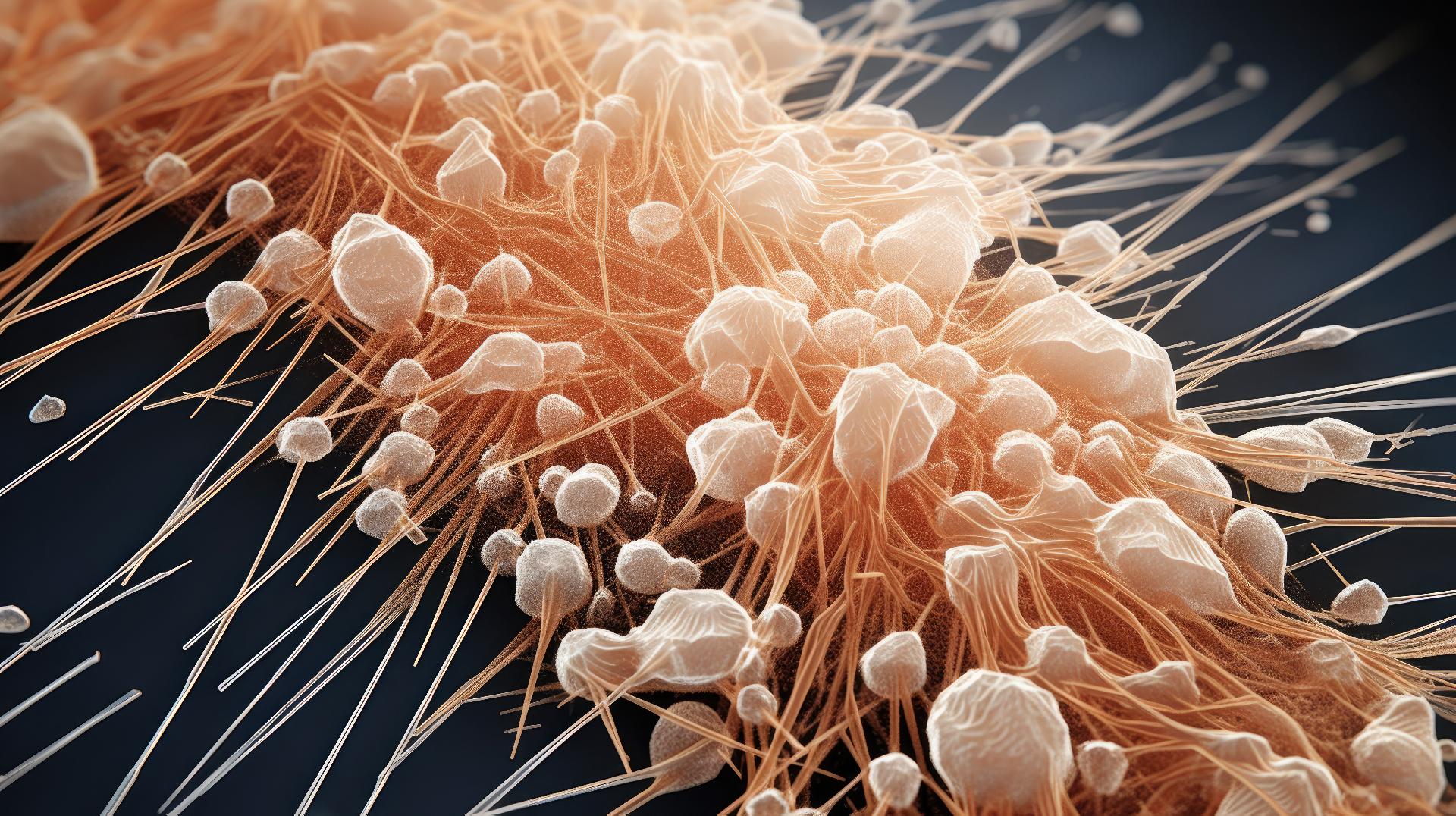 Sanity
Sanity
3+ MIN
12/06/2024
Por Juan Gómez Basauri, Ph.D.
Next-generation foods: Microbiome, nutrition, animal health and wellbeing
The Microbiome
With this interest, the term 'microbiome' may be confusing, particularly to a person who is not a trained microbiologist. For instance, one reference may tell us that the microbiome is the complete set of microbiota (microorganisms, bacteria, fungi), its genes, and the metabolites they produce in the microenvironment in which they reside (habitat) either inside or on the body of an organism (e.g. the intestinal tract, the mouth, the skin, the reproductive system) and sometimes the term microbiome and microbiota are used interchangeably though they are different.
One way to grasp the term microbiome is by using a sports analogy. Imagine a football stadium filled with fans from diverse backgrounds and origins. Similarly, the gut microbiome (the football stadium) consists of a diverse population of microorganisms including bacteria, viruses, fungi, and more. What's more, each fan in the stadium has their own unique characteristics and preferences, as do the different microorganisms present in the gut microbiome.
We can expand this analogy further. Inside the football stadium (the gut microbiome), fans communicate and interact with each other and with the players during the game. Similarly, the microorganisms in the microbiome communicate and interact with each other and with the host (human, dog, or cat) through chemical signals and interactions.
This communication results in a strong association between the microbiome and the health of the gastrointestinal tract and other organs such as the brain, liver, skin, and others. And just as a successful football team requires a balance between offense and defense, the microbiome relies on a delicate balance of its microorganisms to maintain health. In contrast, an imbalance or unprepared team can lead to poor performance on the field, and a disruption of the balance in the gastrointestinal tract known as dysbiosis, can lead to health problems for the host.
While there are numerous factors that influence the composition of the microbiome (e.g. host genetics, age, environment), diet plays a fundamental role in the growth and function of certain microorganisms so they can thrive in their respective niches. Nutritional intervention through diet provides a daily opportunity to enhance the health of the microbiome and ultimately the health of the host.
Studies show that phyla in the gut microbiome and the composition of bacteria and microorganisms respond predictably to dietary changes – high protein diets, and different types of fiber, to mention a few - in both humans and "healthy" dogs and cats.
It is not only important to know the specific phyla and strains, but also their functionality: what types of metabolic processes take place and what metabolites are generated. Metabolites that have been extensively discussed and researched are short-chain fatty acids, butyric, propionic, and acetic acids.
It's important to note that the composition of the microbiota in the intestinal tract is unique to every person, and every dog, cat, and even human also has a unique microbiota profile.
What's next: New generation of foods
For some time now, customized and personalized food has been thought of as a way to tailor dietary recommendations and optimize food choices according to an individual's unique physiological needs for health and wellbeing.
What we already know about the microbiome gives us the starting point for truly personalized nutrition. We should be able to develop personalized food with the desired nutritional outcomes for specific cases and conditions. A study of an individual's microbiome can provide insights into its unique microbial profile and provide personalized dietary recommendations to modulate the gut microbiome to improve and enhance digestion, nutrient absorption, and overall gut health.
Modulating the gut microbiome to enhance wellbeing may seem like a tall order but discovering the secrets that the microbiome holds is key to a long and healthy life not only for our companion animals but also for us humans.
By: Juan Gómez-Basauri
Source: All Pet Food Magazine
 Market Information
Market Information
4+ MIN
10/06/2024
Zoomark and Nomisma shine the light on the non-food pet market
The early highlights of the research conducted by Nomisma for Zoomark on Italian pet owners' shopping habits have just been released. They reveal key trends in the non-food segment, which has consistently expanded in recent years and includes supplements, anti-parasite products, accessories, toys, hygiene products and cat litter. The data presented at the press conference organised to launch Zoomark 2025 – 21st international trade show for pet food and pet care, scheduled for May 5th-7th 2025 at BolognaFiere – are the first step in a broader partnership between Zoomark and Nomisma. This collaboration will develop over the coming months as part of a programme to identify the trends, opinions, habits and behaviours of Italian pet owners. 'The activities that form our two-year strategy with Zoomark allow us to make a tangible contribution to the Italian non-food pet segment for the first time', explained Mattia Barchetti, Head of Market Intelligence at Nomisma. 'The research results provide a cross-section of current and future trends regarding pet owners' purchasing behaviour and preferences, vital information that will help the sector's top Italian and foreign businesses to define their sales strategies.' The pet market keeps on growing The pet market continued to grow globally in 2022, everywhere from the USA to Europe and Asia. Worldwide pet owners are increasingly attentive to caring for their cats, dogs and other animals, choosing both food and non-food products with their wellbeing in mind and treating them as members of the family. Italy is outpacing the USA, China and Europe when it comes to overall expenditure on pets, with a total growth in the pet sector of almost 20% compared to the previous year. Non-food accounted for approximately 43% of the total expenditure. Total spending on pets approaching €7 billion Italian families spend €6.8 billion every year on caring for their animals and ensuring their wellbeing. Of this, 57% goes on food and 26% on veterinary medical expenses. This leaves 17% of pet expenditure dedicated to accessories, and particularly five main categories: supplements and anti-parasite products, cat litter, accessories (home and comfort, dog harnesses, leashes, collars, and clothing), hygiene and grooming products, and toys. Spending on pets as a proportion of Italian families' outgoings has grown consistently in recent years, and particularly after Covid, with an overall increase of 35 bps between 2018 and 2022, leading to significant effects on the pet supply chain. Previews of the Nomisma research show that 52% of respondents reported spending the majority of their monthly expenditure on their dog. When pet owners with more than one animal were included, however, cats were the most frequently cited on this measurement. Italian pet owners: identikit and lifestyle Nomisma's research for Zoomark builds an identikit of the typical Italian pet owner: on average, owners are over 45 years old (47% of survey participants) and belong to a family with children (43% of the panel). In addition, almost 90% of pet parents live in a house with an outdoor space, i.e. with at least a balcony or garden. The analysis also identifies pet owners' various lifestyle types: One in five (19%) define their lifestyle as 'Conscientious', seeking balance between their private life and work, which includes their pets. This is followed by those with a busy 'Urban' lifestyle (10% of respondents) – people who live at a frenetic pace and attend city social and cultural events – and the 'Global and Curious' (also 10%), open-minded citizens with a strong interest in culture and the world. Another 10% defined themselves as having a 'Sustainable' lifestyle, focused on seeking environmentally friendly solutions in all areas of their life. Close behind on the list are the consumers (9% of respondents) who identify as 'Digital', with a passion for technology and online purchases, and another 9% who define their lifestyle as 'Active', i.e. they exercise regularly and follow a balanced diet. Anti-parasite products, home accessories, and hygiene and grooming products were the most frequently purchased products last year, accounting for over 60% of sales. Pet owners continue to have specialised physical shops as their preferred purchasing channel, but online is becoming increasingly more important, particularly for certain product categories. The products with a predicted increase in average spend over the next two to three years include cat litter, anti-parasite and electronic equipment. 'We know how much the food sector is a driving force in the pet economy. Nonetheless, the novelty revealed by the latest trends in the non-food segment tells us about how the market is evolving' - underlines Luisa Bersanetti, Exhibition Manager of Zoomark - 'In the wake of this significant growth, we started the partnership with Nomisma with the aim of analysing the trends and purchasing habits of Italian pet owners; Zoomark's intent remains to offer its exhibitors and visitors the essential tools to increase their business opportunities, and we believe that the first data collected by Nomisma are the right starting point for interesting conversations that we will develop in the 2025 edition." Source: Zoomark
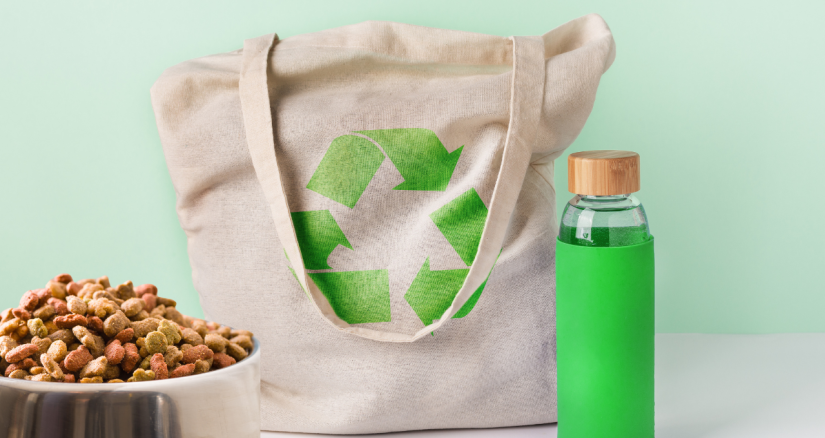 Trends
Trends
4+ MIN
10/06/2024
Pet food ingredients and environmental sustainability
Most pet diets are made with a lot of meat. In fact, if American dogs and cats were their own country, they would rank 5th in global meat consumption.2 Due to the significant environmental impact that raising meat has, it is important for pet owners and brands to factor in how different pet food options impact the environment when selecting or creating a pet product. Wet versus dry A study performed by Brazilian researchers investigated ingredients found in different kinds of pet food (wet, dry, homemade) and estimated the environmental impact, such as greenhouse gas emissions, land use, and water usage. The researchers found that wet diets have the highest environmental impact for both dogs and cats, followed by homemade diets, with dry diets having the lowest environmental impact.3 This is because wet diets utilize more animal ingredients, and diets high in animal ingredients have correspondingly large environmental footprints. The researchers also noted that most of the diets included in the study provided protein and fat in excess of what dogs and cats require, which is likely due to the amount of animal ingredients used in these diets.3 Thus, it is important to select and formulate pet food with appropriate nutrient levels for environmental purposes while minimizing environmental impact. Alternative proteins Since traditionally raised animal ingredients have a significant environmental impact, there is a lot of interest in alternative proteins. In general, producing these protein ingredients requires less land and water, which reduces their environmental impact. For instance, plant-based protein sources have been used in pet food for years, and there are several therapeutic canine diets in the market for dogs with food sensitivities that do not contain animal proteins. Insect proteins like crickets and black soldier fly larvae are nutritionally dense and sustainable and have been gaining traction. Cultured meat and fermentation proteins offer other exciting new frontiers for creating proteins that can be utilized in the food supply. Cultured meat takes cells from, for example, beef or chicken and grows more meat via cell cultures instead of raising more cattle or chicken. Fermentation proteins utilize microorganisms' fermentation abilities to produce proteins that then can be used in diets. These alternative proteins are exciting new environmentally friendly options, but they are also novel ingredients that we have less knowledge about than traditional animal meats. It is recommended that food companies thoroughly analyze these ingredients and perform canine and feline feeding studies to utilize them in products responsibly. Consumers should also look for brands with dedicated resources to ensure their products are healthy for their pets. Regenerative agriculture For environmentally conscious pet owners and brands that still want to utilize animal proteins, thinking outside of typical commercial agriculture may be the way to go. Regenerative agriculture focuses on improving soil health, which is important for mitigating climate change because soil can store carbon.4 Healthy soil is the largest store of terrestrial carbon, whereas poorly managed soil and unsustainable agricultural practices will lead to carbon being released into the atmosphere.4,5 Some strategies that regenerative agriculture implement include planting crops with 'no-till' and incorporating cover crops to minimize the disturbance of the soil.4,5 Animal agriculture can also be regenerative using 'adaptive grazing', which involves moving pastured animals through smaller sections of the overall land instead of always occupying the same space when housed in feed lots. This allows grazed land adequate rest and recovery, recycling of nutrients, and improves animal welfare since the animals have more space to move and exhibit natural behaviors.4,5 There are numerous options for pet owners to choose from, and brands do their best to appeal to the pet owners. Since we and our pets all share one Earth, the environmental impact of the pet diets should always be an important factor when producing or selecting a product. Whether it is proper formulation, utilizing or researching novel ingredients, BSM Partners can help create pet diets that are healthy for the pet and the world they live in. Source: BSM Partners. Resources American Pet Products Association. American Pet Products Association Industry Trends and Stats. Published online 2024. Accessed February 19, 2024. https://www.americanpetproducts.org/research-insights/industry-trends-and-stats Okin GS. Environmental impacts of food consumption by dogs and cats. PLOS ONE. 2017;12(8):e0181301. doi:10.1371/journal.pone.0181301 Pedrinelli V, Teixeira FA, Queiroz MR, Brunetto MA. Environmental impact of diets for dogs and cats. Sci Rep. 2022;12(1):18510. doi:10.1038/s41598-022-22631-0 Food and Agriculture Organization of the United Nations. Noble Research Institute. What is Regenerative Agriculture?
 Market Information
Market Information
3+ MIN
07/06/2024
Por María Candelaria Carbajo
The new era for pet food brands
But innovation, by itself, leads nowhere. We need to do it with knowledge and data-based and, to do so, understanding the main current trends and changing forces is essential to encourage sustained and effective development. Part of that knowledge will come from improving relationships between companies' retailers and consumers.
On the other hand, we must also take into account that the global economy is encountering a series of challenges that bring global instability both at an economic and productive level and mean that the problems on the inflation front are not over yet. When a crisis occurs across an entire industry, we need to focus and join forces because one consumer's trust (or lack thereof) can impact many more and spread to very negative impacts.
However, despite knowing the need to invest in finding these new alternatives, losing sight of motivation amid needs and everyday demands can be easy. In these cases, it is important to remember that most of the time, urgent does not mean high importance. Instead, focusing on those relevant matters in the medium and long term can be much more significant.
It is precisely in these cases that we must join forces and find new paths together.
3 key trends to pay attention to
E-commerce
E-commerce and direct-to-consumer models have been booming since the pandemic boomed, but their role is currently transforming. Today, they are creating opportunities for innovative and niche pet food brands to reach a broader audience while online platforms make it possible to educate consumers about their offerings and the benefits of their products.
Lower budgets
Pet food consumers are increasingly tending not only to reduce but also to plan and budget the expenses related to their pets. They remain very loyal to the products they choose but with less willingness to spend. By understanding these consumer behaviors, brands can allocate their resources appropriately, adjust strategies, and seek out key partners.
Collaboration and co-participation
When there were crises in the industry, such as the recall of certain contaminated foods, collaboration was what held brands. Furthermore, we know that crisis can mean opportunity. These events have driven the industry to have better and new standards. Since these changes, manufacturers have implemented and received improvements to track ingredients throughout the supply chain, protecting pet health and helping to restore consumer trust. In turn, it has forced all parties to advocate for better communication.
On the other hand, although there is a strong increase in pet owners who are increasingly aware, there is still a large number of consumers who see pet food as a true mystery. In these cases, purchasing decisions are motivated by emotions. Co-participation and collaboration are essential to educate because, when misinformation is spread, consumers do not know what to believe.
Conclusion
The pet food industry is undergoing a transformative phase, driven by innovation that answers both pet owners' desires and the Earth's needs and the market. The most advanced countries are already blazing a trail that combines modern technology, sustainability, and a deep understanding of animal welfare.
As the bond between humans and their pets deepens, the search for healthier, more sustainable, and technologically advanced pet food options will continue to drive the industry.
Source: All Pet Food Magazine.
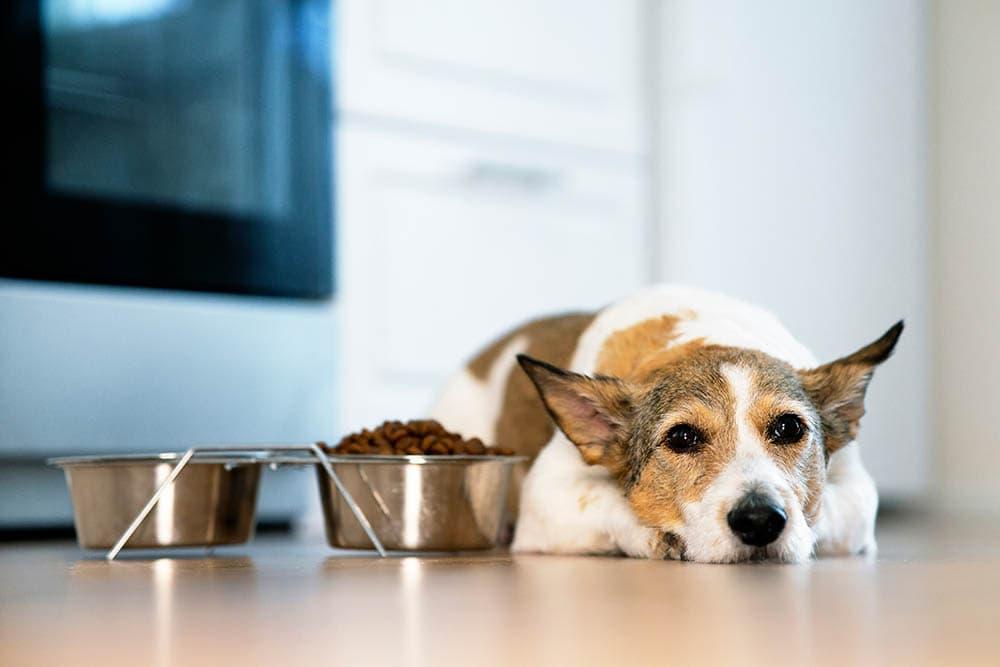 Ingredients
Ingredients
3+ MIN
06/06/2024
Additives in pet food
The term 'additive' can be applied to a range of ingredients that manufacturers add to the basic ingredients that are at the heart of pet food. These minor ingredients include mainly essential nutrients such as vitamins and minerals, but also flavours, colours and agents to prevent harmful spoilage of the pet food due to fats going rancid or through bacterial contamination. Vitamins and minerals are presented in the factsheet 'Nutritional needs of Cats and Dogs'. Preservatives Pet food safety is of critical importance. Preservatives may be added, largely depending upon the type of pet food product and processing, to ensure that food products remain nutritious and safe for consumption throughout their shelf life. The food must be protected from bacterial or mould contamination and spoilage, further it must be protected from degradation and the loss of nutrients during storage. The method of preservation used depends on the type of food because the way of processing also contributes to the food integrity and shelf life: Dry pet food: The manufacturing process kills microbes and the low moisture content helps to inhibit the growth of most organisms. Moist pet food: The heat applied in cooking of canned or pouch pet food kill microbes and the packaging excludes air, protecting the food. Chilled pet food: Processed chilled pet food has undergone a controlled thermal process and this, together with refrigeration during storage helps suppress spoilage. Semi-moist pet food: This generally has a low pH and contain humectants that bind water to the product, making it less available for use by invading organisms. Antioxidants Antioxidants are used to protect pet food from deterioration due to oxidation. All pet food has some fat and/or oil content and these should be stabilised by including antioxidants to prevent fats from reacting with oxygen in the air (oxidising) and food becoming rancid which leads to losses in nutritional quality. The inclusion of antioxidants helps to maintain wholesomeness and quality of the food. Antioxidants are incorporated into dry and semi-moist pet food to protect them from exposure to oxygen after processing. Antioxidant preservatives that might be included in dry pet food include: a variety of herbal or plant extracts including: vitamin E (tocopherols), vitamin C (ascorbates) or manmade antioxidants, which have been used in various human food for many years. Colouring agents Colouring agents may be added to pet food to enhance the appearance of the food. These include a range of naturally occurring food colours, food dyes or mineral based colours. Emulsifiers and stabilisers Emulsifiers help keeping the fat in the food and prevent the water from separating. Gums and lecithin are used to prevent separation of ingredients and to create the gravy or gel in canned, pouch and other moist pet food. Food gums include seaweed extracts and seed gums such as guar gum (from the guar plant). Flavours Flavours are used to enhance the palatability in some pet food and to provide product variation. Much of the appeal of prepared pet food to the dog or cat stems from the choice of raw materials, such as fish, meat, vegetables or cereals. As with food for humans, the cooking process often increases the palatability of pet food. Some flavours may be added to some pet food and these can be natural flavours such as extracts from fish or poultry, or agents designed to mirror natural flavours. Gut flora stabilisers Gut flora stabilisers such as live micro-organisms can be added to pet food and have a positive effect on the gut microbiota. These live micro-organisms, classified as zootechnical feed additives by the European authorities and commonly known as 'probiotics', can be a good alternative to reduce the use of antibiotics in animals and more specifically in pets. Source: FEDIAF.
 Ingredients
Ingredients
5+ MIN
04/06/2024
Manufacturers need partners who support them in understanding the Pet Food ecosystem
A supplier needs to understand its customers' reality to help them face daily difficulties and build a promising future. Challenges within our market can be found not only in the external environment (customers, pets, distributors, etc.) but also in the factories and, if you look deeper, inside the kibbles. Through services and shared knowledge, suppliers can contribute to the applicability of their solutions and evaluation mechanisms to make the most of their use.
Pet food producers do not need to have 100% of their needs met by their efforts. Suppliers that have been established in the market for a long time and are committed to the development of the pet food ecosystem have a lot to offer you. Production and application consultancy, analysis of physicochemical parameters of kibbles, additive utilization rates, and comparisons of the characteristics of your products versus your competitors are some examples of support services that Symrise Pet Food can offer you.
You also need to have a thorough understanding of the expectations of owners and their pets, as well as the evolution of technologies and the market. This is not done by a stroke of luck but through an absolute knowledge of what constitutes this ecosystem.
Understanding pets and owners
Pets and their owners are a fascinating topic to study; That is why we have a series of tools and services that allow us to know them in depth to provide you with a unique holistic approach, which considers the vision and opinion of the owners and the preferences and behaviors of the pets.
On the one hand, having a clear voice from pets can be challenging. In fact, many decisions are made through the voices of our pets, after all, they are the real consumers. Imagine if the responses of dogs and cats were compromised in some way… Brands could go in very wrong directions.
Then, it is essential to have reliable, statistically robust responses aligned with animal ethics policies that guarantee excellent living conditions for pets. That's why you've probably encountered our Panelis team (our expert measurement center), whether at our facilities, conferences around the world, or in your office. They are the ones to help you make reliable, pet-based decisions, in addition to being one of our most visible commitments to the generation and transfer of knowledge for the construction of a promising future for our ecosystem.
Listening to what pets have to say is essential, but matching the voices of pet owners with pets is state-of-the-art. How do pet owners interpret their pets' satisfaction? What is the evidence for pets' pleasure in eating? The interaction of the actors in our ecosystem must interpret and answer both questions to ensure that this much-needed bond of care and affection between pets and owners is strengthened. Specific methodologies focused on pets and owners, such as the 'Liking Test' study protocol and in-home panel studies, are clear examples of tools to capture the interaction of pets and their owners.
When we talk about the feasibility of listening to the voices of pet parents, challenges become even bigger. Options in many markets are more than limited and often inaccessible, whether due to budget restrictions, the quality of responders, or reactivity.
An increasingly digital environment has allowed new tools to be created and used to benefit our market. Symrise Pet Food acquired Yummypets in 2017 to complement our Panelis service by enlarging our comprehensive view with pet owners' insights. This tool now owns 7 proprietary pet owners' panels in 7 countries. This allows us to capture, analyze, and deliver insights into pet owners' expectations and buying habits/behaviors. Evaluating new claims, investigating the acceptability of new product positions, or even evaluating new packaging is becoming simpler and more accessible.
Proudly, standing by your side
Living together and sharing successes and failures in the same place is the most effective way to build a true partnership. Ever since our origins, we have made it clear that our goal would be to maintain a commercial relationship based on the local markets, following our motto 'the closer, the better,' come what may, and most importantly, without intermediaries that add time and demand unnecessary efforts.
At Symrise Pet Food, we put at your service an unparalleled industrial structure as well as an agile and reliable supply chain so that you can count on a constant and on-time supply. We oversee searching for and having the best suppliers nearby to provide products characterized by unmatched freshness. The same one that pets, and their owners adore.
Thanks to our local experts, we can help you navigate the pet food market ocean by providing you with the most recent insights and informing you before anyone else about the trends yet to come. Have you ever wondered how your brand interacts with its direct competition? We can help you understand if your efforts for unique positioning are being appreciated by the market or if some small adjustments need to be made.
Finally, if you have questions about the kibble or the production process and don't know who can help you, we are here to work with you. The good thing about having our support is that you have experts by your side who know the process from end to end and better yet, who know all the aspects of kibble formulation and how they can impact the acceptance by our furry friends.
Environmental safety & sustainability
Today, pet parents are more aware than ever of how pet food is made and how it impacts the environment. Symrise Pet Food understands this approach because it was born out of a desire to value side streams and make the most of local raw materials. That's also what led us to develop a unique tool: the Eco-Design matrix. It is responsible for measuring the environmental impacts of SPF products throughout their life cycle, from our suppliers' factory to the delivery to our customers.
We also extended our approach to our factories and processes: in 2019, we began to build all our plants following sustainable guidelines. Today, we are proud of our plants in Colombia, Brazil, and China that were built under LEED certification standards for the construction of green buildings. In our remaining 29 plants, we work every day to adapt them to current standards: effluent treatment systems, gas control, and optimization of energy use, among others.
If you are eager to apply sustainable standards like these in your plant, we'll be happy to share with you all of our knowledge and best practices about it.
In the current context, we need companies committed to developing long-lasting, reliable, and forward-looking relationships that allow us to accompany the development of the pet food industry.
Our comprehensive understanding of the market ecosystem is what enables us to provide our partners with the best solutions to meet the market expectations. Beyond our products, sharing this knowledge is most of all, a key part of the support we bring to pet food manufacturers, helping them reach common objectives: to improve pets' well-being, enhance owner satisfaction, and nurture their bond.
By; Symrise Pet Food.
Source: All Pet Food Magazine.
 Trends
Trends
4+ MIN
04/06/2024
Sustainability: How Pet Food Utilizes Animal Co-products of Human Food
According to the Association of American Feed Control Officials (AAFCO), many naturally derived food commodities produce primary products such as muscle meats as well as secondary products such as heart, liver, kidneys, lungs, and gizzards. Secondary products (by-products) are often used in animal feed like pet food.1 Many popular resources available to pet parents advise against the feeding of pet foods containing animal by-products; however, the addition of animal by-products or 'co-products' can be palatable additions to pet foods.2 In addition, animal by-products can be a healthy and sustainable source of essential nutrients for dogs and cats.3
Sustainability
Commercial pet food production is highly related to livestock production as well as the human food industry.4 The use of animal co-products in pet foods is not only palatable and nutritious but also environmentally sustainable.5 Animal co-products used in pet food may include liver, heart, kidneys, lungs, tripe, plasma, and bone6 By utilizing animal co-products, the pet food industry can reduce the environmental effects of human food production by utilizing inedible meat, which is defined as adulterated, uninspected, or not intended for use as human food (9 CFR § 301.2),1 and poultry and fish co-products that would otherwise be disposed of.7
Palatability and Nutrition
The inclusion of animal co-products is one method some pet food companies use to improve the palatability of a dog or cat diet. As raw ingredients are difficult to handle and store in some pet food manufacturing facilities, many pet food companies opt to use rendered co-products in a meal form instead.1 In a study evaluating the palatability of poultry by-product meal in a dog diet, it was observed that the diet had an appealing appearance and smell to pet parents and was readily accepted by dogs without hesitation.8 Another study evaluating the palatability of dog diets containing chicken in fresh, dried, and meal form showed that diets with chicken meal and by-product meal were preferred compared to diets with fresh and dried chicken.9 The inclusion of animal co-products like meat meal is an effective way to include essential nutrients in a pet's diet without negatively affecting digestibility or fecal quality.10-12 In addition, rendered co-products are valuable to the pet food industry as they are nutrient-dense and considered affordable in relation to their nutrient value.13
Although many popular resources available to pet parents advise against it the addition of animal co-products in pet foods is a nutritious and palatable source of protein for companies and consumers who value sustainability.
By: Ada-Miette Thomas.
Source: BSM Partners.
References
Association of American Feed Control Officials. 2024. Byproducts. AAFCO. https://www.aafco.org/consumers/understanding-pet-food/byproducts/#:~:text=In%20the%20case%20of%20animal,not%20exclusively)%20for%20animal%20consumption.
Corbin, J.E. 1992. Inedible meat, poultry and fish by-products in pet foods. In Inedible Meat by-Products. (pp. 329-347). Dordrecht: Springer Netherlands.
Mora, L., Toldrá-Reig, F., Reig, M., Toldrá, F. 2019. Possible uses of processed slaughter byproducts. In Sustainable Meat Production and Processing. (pp. 145-160).
Swanson, K.S., Carter, R.A., Yount, T.P., Aretz, J., Buff, P.R. 2013. Nutritional sustainability of pet foods. Adv. Nutr. 4(2):141-150.
Mosna, D., Bottani, E., Vignali, G., Montanari, R. 2021. Environmental benefits of pet food obtained as a result of the valorisation of meat fraction derived from packaged food waste. Waste Manage. 125:132-144.
Walsh, C. 2014. The use of animal by-products. EBLEX: Stoneleigh Park, UK, 1-73.
Watson, P.E., Thomas, D.G., Bermingham, E.N., Schreurs, N.M., Parker, M.E. 2023. Drivers of palatability for cats and dogs - What it means for pet food development. Anim. 13(7):1134.
Karthikeyan, N., Singh, R.P., Johri, T.S., Tanwar, V.K. 2002. Nutritional quality and palatability of pet food from poultry by-product meal. Indian J. Anim. Sci. 72(5).
Shields, C.J., Rozzi, N.L., Aldrich, C.G., Talavera, M.J. 2023. Chicken proteins in dog food Effects of different chicken protein sources on palatability in dry adult dog food. Front. Anim. Sci. 4:1292658.
Abd El-Wahab, A., Chuppava, B., Zeiger, A.L., Visscher, C., Kamphues, J. 2022a. Nutrient digestibility and fecal quality in beagle dogs fed meat and bone meal added to dry food. Vet. Sci. 9(4):164.
Abd El-Wahab, A., Zeiger, A.L., Chuppava, B., Visscher, C., Kamphues, J. 2022b. Effects of poultry by-products inclusion in dry food on nutrient digestibility and fecal quality in beagle dogs. PLoS One. 17(11):e0276398.
Chuppava, B., Siebert, D.C., Visscher, C., Kamphues, J., Abd El-Wahab, A. 2023. Impact of animal by-products on diet digestibility and fecal quality in beagle dogs. Life. 13(3):850.
Meeker, D.L., Meisinger, J.L. 2015. COMPANION ANIMALS SYMPOSIUM: Rendered ingredients significantly influence sustainability, quality, and safety of pet food. J. Anim. Sci. 93(3):835-847.
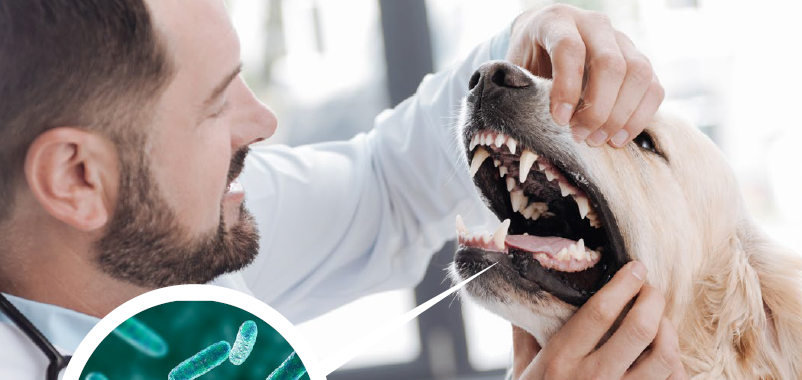 Insect Based
Insect Based
3+ MIN
31/05/2024
Canine oral health & insect-based pet food
About the study
Eight beagle dogs were fed a black soldier fly larvae (BSFL) meal-based extruded diet over a period of 50 days, in a cross-over study. The black soldier fly diet was compared to a control diet with a similar nutrient and ingredient composition but based on poultry by-product meal (PBP), for the same 50-day period.
Samples of the dogs' dental plaque were taken before and at the end of each period. VSC-producing bacteria were counted, saliva was subjected to microbiota evaluation, and bad breath was assessed using an odour intensity scale.
The study was conducted by the Federal University of Paraiba in 2023. The black soldier fly larvae meal used was ProteinX® from Protix, composing 29.5% of the diet.
Overall improved oral health with black soldier fly larvae meal
1. Reduction of VSC-producing bacteria
ProteinX realised a 7% reduction in VSC-producing bacteria in the dental plaque. This outcome is particularly notable, since these bacteria would typically increase with regular food consumption with no dental prophylaxis. The results show that food with ProteinX actually reversed the bacterial growth pattern from an expected increase to a decrease. VSC-producing bacteria are responsible for bad breath and dental and gum disease.
2. An increase in beneficial bacteria
ProteinX seems to modulate saliva microbiota, increasing the abundance of Moraxella bacteria, according to the metagenomic analysis (using 16s rRNA gene sequencing). This group of bacteria is considered a marker of oral health and beneficial for the oral microbiome.
3. Breath evaluation
The dogs' breath was evaluated after 50 days of consuming the test diet (PBP and BSFL) by a blind panel composed of four subjects using an organoleptic intensity scale5. Dogs presented a trend of a lower score for bad breath (odour intensity scale) when fed a black soldier fly larvae diet, and a significative higher frequency of score 1 (barely noticeable odour), indicating that dogs had breath improvement, probably able to be detected by owners.
ProteinX
ProteinX contains components with antimicrobial properties that are able to disrupt the bacterial cell envelope and its homeostasis, leading to bacterial death. The components are antimicrobial peptides (AMP), such as cecropins, coprisin, defensins, cathelicidin and insect AMP-complexes; fatty acids (especially lauric acid) and polysaccharides, such as chitin6.
Mechanism of action of AMPs
The anionic molecules in the membranes of bacteria attract cationic antimicrobial peptides (AMPs) via electrostatic and hydrophobic interactions. Unlike bacteria, the cytoplasmic membrane of mammalian (host) cells with a neutral net charge has no or a weak interaction with cationic AMPs, meaning the host's cells are barely affected (figure 3).
If you want more information, visit the website HERE.
Source: Protix.
References:
1 OLSÉN, L.; BRISSMAN, A.; WIMAN, S.; ERIKSSON, F.; KAJ, C.; BRUNIUS ENLUND, K. Improved oral health and adaptation to treatment in dogs using manual or ultrasonic toothbrush or textile of nylon or microfiber for active dental home care. Animals, v. 11, n. 9, p. 2481, 2021
2 HENNET, P.; DELILLE, B.; DAVOT, J. L. Oral malodor in dogs: measurement using a sulfide monitor. Journal of veterinary dentistry, v. 12, n. 3, p. 101-103, 1995
3 ALLAKER, R. P. Investigations into the micro-ecology of oral malodour in man and companion animals. Journal of Breath Research, v. 4, n. 1, p. 017103, 2009.
4 Neto, E. S., Cardoso, R. K. N., Santos, L. A. T. A., Sampaio, F. C., Santos, E. M., Restan, W. A. Z., ... & Loureiro, B. A. (2023). Black soldier fly (Hermetia illucens) larvae meal based extruded diets: potential to improve canine oral health.
Journal of Insects as Food and Feed,1(aop), 1-13.
5 Greenman, J. et al., 2004. Study on the organoleptic intensity scale for measuring oral malodor. Journal of Dental Research 83: 81-85. https://doi.org/10.1177/1544059104083 00116
6 Veldkamp, T., Dong, L., Paul, A., & Govers, C. C. F. M. (2022). Bioactive properties of insect products for monogastric animals–a review. Journal of Insects as Food and Feed, 8(9), 1027-1040.
7 Geitani, R., Moubareck, C. A., Xu, Z., Karam Sarkis, D., & Touqui, L. (2020). Expression and roles of antimicrobial peptides in innate defense of airway mucosa: potential implication in cystic fibrosis. Frontiers in immunology, 11, 1198.
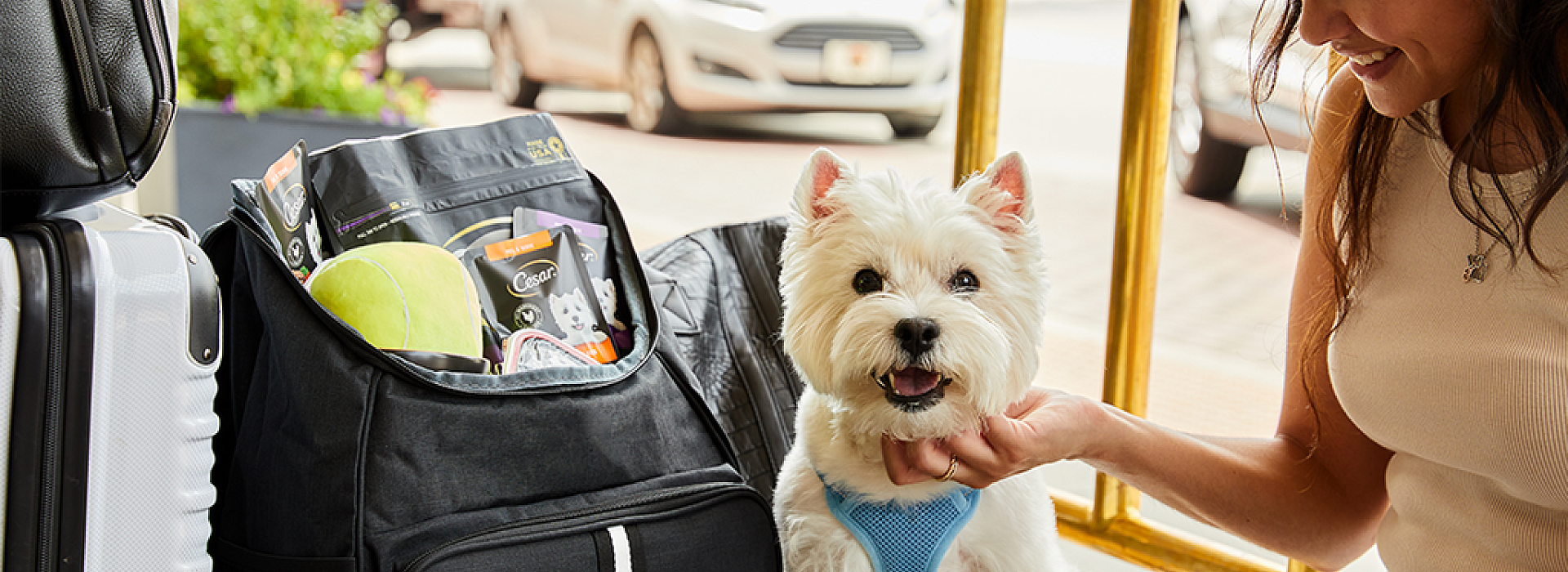 Market Information
Market Information
4+ MIN
30/05/2024
Mars announces partnership with Tripadvisor, connecting today's pet parents with better travel experiences
Mars Incorporated, a global leader in pet care products and services, confectionery, snacking and food and the maker of some of the world's most-loved brands, has today announced a partnership with Tripadvisor*, the world's largest travel guidance platform, kicking off in the U.S. market with plans for future global expansion. Through a new co-branded digital hub, consumers will be inspired by and connected to pet-friendly communities across Tripadvisor's platform, while businesses will be encouraged to realize the cultural, well-being and financial benefits of becoming pet-friendly. Despite 73% of U.S. Tripadvisor users owning pets2, less than 1%3 of Tripadvisor's U.S. restaurants are currently listed as pet-friendly, demonstrating a huge need for more pet-friendly businesses. The collaboration furthers the broader Mars Petcare Purpose: A BETTER WORLD FOR PETS, and the CESAR® brand's commitment to making the world a more dog-friendly place, by improving the experience of traveling with pets at every step of the journey. It's the result of a significant investment from Mars to accelerate the digital transformation of its pet nutrition business to meet the needs of the increasingly "always-connected" pet parent. 'At Mars, we're dedicated to becoming the most digitally enabled, pet parent-centric organization, which means collaborating with innovators like Tripadvisor to transform the pet parent experience,' says Natalia Ball, Global Chief Growth Officer of Mars Pet Nutrition. 'This partnership cements our commitment to supporting pet parent communities, using our unmatched expertise, knowledge and relationship with over 400 million pets and their pet parents who purchase our products every year.' Shaping the future of pet-friendly travel Travel remains a highly researched topic for today's pet owner – in the U.S., 'pet travel' is searched on Google over 19 million times annually4, yet it remains one of the biggest pain points. The same data found pet parents only take a vacation "once every few years" or less because of pets and 33% of pet parents have actually altered travel plans because of difficulty traveling with them. In addition, of the 746,000 U.S. restaurants on Tripadvisor, only 5,000 – less than 1% – are listed as pet friendly. The partnership serves to help bridge this gap, using digital technology to connect consumers with pet-friendly options, helping to guarantee a better travel experience for pets, their parents and the businesses that want to support them. Partnership features include: A new consumer hub, available online or through Tripadvisor's mobile app, offering a one-stop resource for pet-friendly travel. Specifically: City guides developed in partnership with CESAR®, featuring pet-friendly travel tips and attractions in BETTER CITIES FOR PETS™-certified U.S. cities, including Miami, Austin, Nashville, Phoenix and Palm Springs, with plans to expand globally. An enhanced AI Trip Builder for users to build a pet-friendly trip in minutes with a personalized itinerary guided by traveler tips and reviews. A hub for businesses to discover the benefits of welcoming pets, including how to become pet friendly on Tripadvisor, how to accommodate pets, and how to ensure consumers know that they can visit with their animal companion. The launch of a new coveted Travelers' Choice Best of the Best Award category, Pet-Friendly Hotels, with Hotel Fioreze Quero Quero in Brazil named the world's most pet-friendly, and Hyatt Centric Las Olas Fort Lauderdale in Florida taking the title in the U.S. 'We know our travelers love their pets and are looking for hotel and restaurant recommendations to make sure they can enjoy every part of their adventure together,' says Christine Maguire, Global Vice President of Sales & Partnerships, Tripadvisor. 'Through this partnership, we're streamlining the journey for those who want to bring their pet along, helping them create lifelong memories – while encouraging and supporting the growth of pet-friendly businesses.' The CESAR® brand – which believes that the best life is a shared life – made a commitment in 2022 to make the world a dog-friendly place, so that people and their pets can always be together. Today marks a huge milestone in delivering this commitment, by partnering with Tripadvisor on the launch of the new Traveler's Choice Pet-Friendly Hotel award category for 2024. The top pet-friendly hotel in the world was named Hotel Fioreze Quero Quero in Brazil, which boasts over two acres of open space for pet parents and their four-legged friends to explore. The No. 1 pet-friendly hotel in the U.S. is the Hyatt Centric Las Olas Fort Lauderdale in Florida, which allows pets on every floor and in the outdoor garden sitting area. If you want more information, visit the website HERE. Source: Mars.
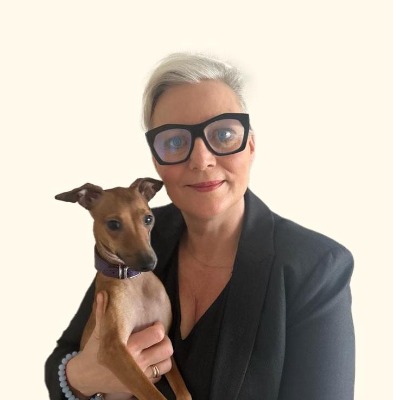 Interviews
Interviews
4+ MIN
29/05/2024
The interview - Sonia Franck
How can you describe your role in the Pet Food Industry? Since joining the pet food industry as Secretary General of FEDIAF EuropeanPetFood, I have recognised the value of my experience in the pharmaceutical industry and the number of useful links. Fundamentally, both industries share a common goal of promoting health and well-being. The pet food industry is a dynamic sector that continuously strives to meet the evolving nutritional needs and preferences of our pets. Staying abreast of scientific research, safety, market trends and consumer demands is something to which I am accustomed. The expertise I gained in the pharmaceutical sector will support my contribution to the ongoing efforts to ensure that Europe's 340 million pets receive nutritious and safe pet food. I must also note that personally, I have always been passionate about rescuing pets and am committed to advocating for pet welfare. My move to the pet food industry has not been a surprise to my former colleagues and friends! I have now aligned my career with my experience and passion for pet welfare. I am truly excited about the value I can bring to the European Pet Food Industry. How would you describe your job as Secretary General of IML Innovative Medicines in Luxembourg? I am extremely proud of my work at IML, the voice of the private research-based pharmaceutical industry active in the Grand Duchy of Luxembourg. Through IML's representation of 64 global companies, the association encourages therapeutic innovation in medicines for human use. Here I played a key role in transforming the association. We worked hard to develop and introduce a new five-year strategy; we restructured its management and diversified revenue streams. My primary objective at IML was to enhance the industry's visibility and have a positive impact on public health. This is one of the many key experiences, which I know will help shape and bring value to my work in the pet food industry. How did you receive your new role as General Secretary at FEDIAF? Although I have only been in my role at FEDIAF for one month (at the time of writing this interview!), I am already enjoying being immersed in a busy team. In fact, one aspect that particularly excites me is the opportunity to lead, build and guide a small team of dedicated colleagues in Brussels. To remind your readership, our team looks after the needs of our membership, which includes 15 European national pet food associations, together with five pet food manufacturers operating in Europe. We estimate that this equates to around 150 pet food companies (200 plants) across Europe, producing 10.5 million tonnes of pet food. This is a big responsibility for our team and one that I am embracing as the new Secretary General. What do you think are the main challenges in this position? My main challenge will be to support the team and deliver the 'asks' outlined in our Manifesto and three pillars. Here we highlight our challenges and objectives. Our first pillar is to ensure the supply of nutritious products across Europe. We will continue to collaborate with authorities, regulators, and academics to ensure our members are able to continue in their supply of safe, nutritious, and palatable products. We will work closely with experts to update our Nutritional Guidelines, and Labelling Code, and also bring new, expert-written factsheets on a wide range of nutrition topics. Our second pillar is to promote the benefits of pet interaction and responsible pet ownership. We highlight the key role of nutrition in pet welfare. This year, we have welcomed the proposed animal welfare legislation and will continue to monitor its progress. A key focus of our work is to contribute to the Pet Alliance Europe, our collaboration with AnimalhealthEurope, FECAVA and FVE where our combined voices are stronger in the promotion of pet welfare messages. This year we will also be promoting the wealth of scientific research proving the benefits of pets in terms of human health. Thirdly, we are committed to sustainability from farm to bowl - the responsible use of resources and minimising our environmental impact. Therefore, we are monitoring various environmental developments at the EU and a national level. We are actively working on the packaging and packaging waste regulation proposal, and we continue to promote the importance of Product Environmental Footprint (PEF) methodology for the pet food sector, especially in the context of discussion on green claims. This methodology is key to a harmonised framework and supporting consumers. How do you see the pet food industry nowadays? The European pet food industry is critical to the health and well-being of Europe's 340 million pets. There are around 127 million cats, 104 million dogs, 53 million birds, 29 million small mammals, 22 million aquaria and 11 million terraria, to be precise! As the number of pets grows, so does our Industry. Annual sales of pet food products are around 29.1 billion euros, and this is a growth of 5.1%. In volume terms, the pet food market has also grown 3.5% and is currently 10.5 million tonnes. You can read more about European data in our Facts & Figures report. And what do you think is the most important problem to be addressed this year? With my arrival coinciding with the EU elections, I recognised that there would be challenging files to tackle. The dynamic landscape of the European Union presents a host of complex issues that require thorough analysis and diligent work. However, I am eager to take on these challenges, leveraging my experience and expertise to contribute to the advancement of the pet food industry and the well-being of pets. I will continue to advocate for its interests amid evolving regulatory and political environments. It will be an exciting year! For more information, please visit www.europeanpetfood.org or contact [email protected] Source: All Pet Food Magazine.
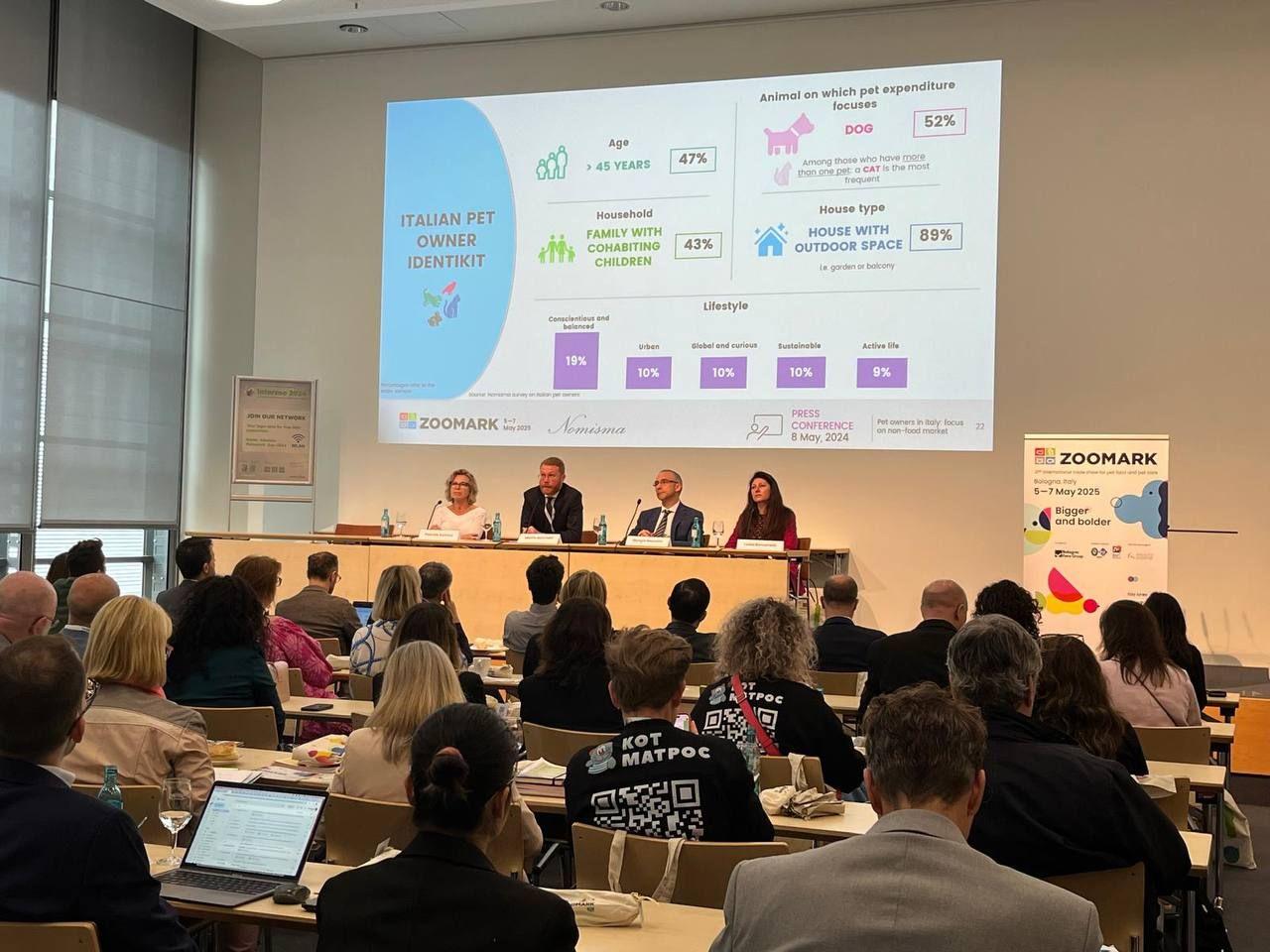 Market Information
Market Information
5+ MIN
24/05/2024
ZOOMARK 2025 - A landmark event for the global pet market
The countdown to Zoomark has begun! Exactly one year to its 21st edition, the global pet food and pet care trade show – scheduled for May 5th-7th 2025 at BolognaFiere – was officially presented to international media and companies. The press conference – hosted by Luisa Bersanetti, Exhibition Manager at Zoomark, Pascale Sonvico, Show Office and Sales Manager at Zoomark, with the participation of guest speakers Giorgio Massoni, President of Assalco and Mattia Barchetti, Head of Market Intelligence at Nomisma – revealed all the latest news about the event as well as market insights. Giving the promising results achieved with our Rebooking and Early Bird campaigns, Zoomark 2025 is shaping up to be a success, with over 50% of exhibition spaces already snapped up. 'Zoomark, with its winning combination of culture and business, has always been an essential event for the pet market', noted Pascale Sonvico, Show Office and Sales Manager at Zoomark. 'We are grateful to the exhibitors and visitors who have cemented our success over the years, turning Zoomark into an unmissable occasion for the entire industry, eagerly anticipated by companies all over the world and increasingly important from a strategic perspective. Now Zoomark becomes even more ambitious in its aims and targets, or, as the new slogan says, Bigger and Bolder. Our goal is to involve each company, each retailer and other pet professional to create a memorable event. 2023 was a record-breaking year, with over 68,000 m2 of exhibition space, 1,060 exhibitors and an incredible 28,000 visitors.' Zoomark 2025 will be the hub of the future. 'We want to provide an exclusive platform for all brands around the globe, creating new business opportunities while forecasting market trends and shining a light on topics such as sustainability, the concept of One Health, and tailor-made products, which are so popular with Gen Z', Sonvico continued. 'At Zoomark 2025 we will provide visibility to what is relevant today, but we will also look further ahead and offer space to the future-forward topics within our dedicated areas." Pet tech is a fast-growing and crisis-proof trend, and with this in mind, Zoomark has decided to build the Next 5.0 area for the future of the pet market, innovation and cutting-edge technology: a space dedicated to start-ups and more established businesses that offer high-tech solutions in fields like pet health and security. Meanwhile, Zoomark's brand-new project Factory will put the spotlight on all businesses in the manufacturing supply chain (suppliers of raw and semifinished materials, equipment, packaging and services to the industry and to distributors), which plays an increasingly central role in meeting the needs of a growing market. For the first time, Zoomark 2025 will also highlight excellence in the world of pet fashion, design and beauty through the launch of Atelier, a premium space for top buyers, brands and businesses. Two beloved and long-standing projects will return to Zoomark 2025: Pet Vision (the new products showcase) that in 2023 displayed around 500 novelties, serving as a compass for distributors and retailers seeking future trends, and Aqua Project for businesses in the aquarium and terrarium sector, which will host meetings and seminars as well as exhibition space. And the new features at Zoomark certainly do not end there! As Luisa Bersanetti, Exhibition Manager at Zoomark, pointed out, this constantly evolving, always up-to-date event is increasingly global in its outlook. 'Zoomark provides a bridge between Europe and the rest of the pet world', Bersanetti noted. 'In 2023, Zoomark welcomed exhibitors from 57 different countries and 62% of visitors from abroad, including high-profile players from every continent. In 2025, we will further increase the number of buyers from key locations, and particularly emerging markets, offering businesses with stands at the event real growth opportunities. To this end, we have already launched our new promotional campaign, with significant marketing efforts in advertising, in both print and digital media, across the world. The additional support provided by the Italian Trade Agency (ITA/ICE) for Zoomark's programme to attract external businesses has been crucial, helping us to meet our targets.' Other new, highly anticipated projects are also quickly taking shape, including the strengthening of major international partnerships. One such venture is the agreement reached recently with Pet Fair South East Asia, where Zoomark will be coordinating the Italian businesses in the Italy Pavilion. In a little over a month, on June 26th-28th 2024, Zoomark will bring its Pet Pavilion to the Shenzhen Convention & Exhibition Centre in the city's Futian district for Marca China, a dynamic event for private labels, e-commerce and large-scale retail. Zoomark's exclusive area dedicated to the pet sector will provide numerous Italian and international pet-related companies with preferential access to the Chinese market. The centrepiece of the press conference in Nuremberg was the announcement of some of the most significant data emerging from the 2024 Assalco-Zoomark Report. The report revealed that, despite tricky conditions, the Italian pet economy has now reached significant heights, reinforcing Zoomark's position as a key event for global players interested in the Italian market. Giorgio Massoni, President of Assalco, gave a summary of insights in the Italian pet food and pet care sector and the outlook for the months ahead: 'The pet food market is proving to be resilient, confirming the attention that owners give to their pets, their life companions'. The final item on the agenda was a preview of some of the highlights from a new piece of research conducted by Nomisma for Zoomark, which aims to provide a snapshot of the accessories sector by identifying current trends and the opinions, behaviour and purchasing habits of Italian pet owners. 'Nomisma has honed an innovative approach through its new partnership with BolognaFiere, seeking to analyse and study the trends in a market segment that is increasingly important for the pet sector, responsible for around 20% of overall revenue, which is non-food.', revealed Mattia Barchetti, Head of Market Intelligence at Nomisma. The data presented at Interzoo 2024 on Italian pet owners' shopping habits paints a clear picture of a segment that has shown continuous growth in recent years. 'This survey is only the first step in a larger project, which will continue to develop as Zoomark 2025 approaches', Barchetti concluded. 'Zoomark is one of BolognaFiere's most prized events. It has accompanied the growth in the pet industry for over 20 years, interpreting the needs of the market and anticipating future trends. The active partnership between Zoomark and Interzoo and the fact they are held in alternate years makes them both unmissable events in Europe for the global pet food and pet care industry. As a result of the growth in animal food and wellbeing products in modern mass retail, in June we will take our Pet Pavillion to Shenzhen as part of Marca China – another global BolognaFiere event dedicated to the private label market', stated Gianpiero Calzolari, President of BolognaFiere, officially starting the countdown to the event. 'We are sure that businesses wishing to enter the Chinese market will grab this new opportunity with both hands'. Source: Zoomark.
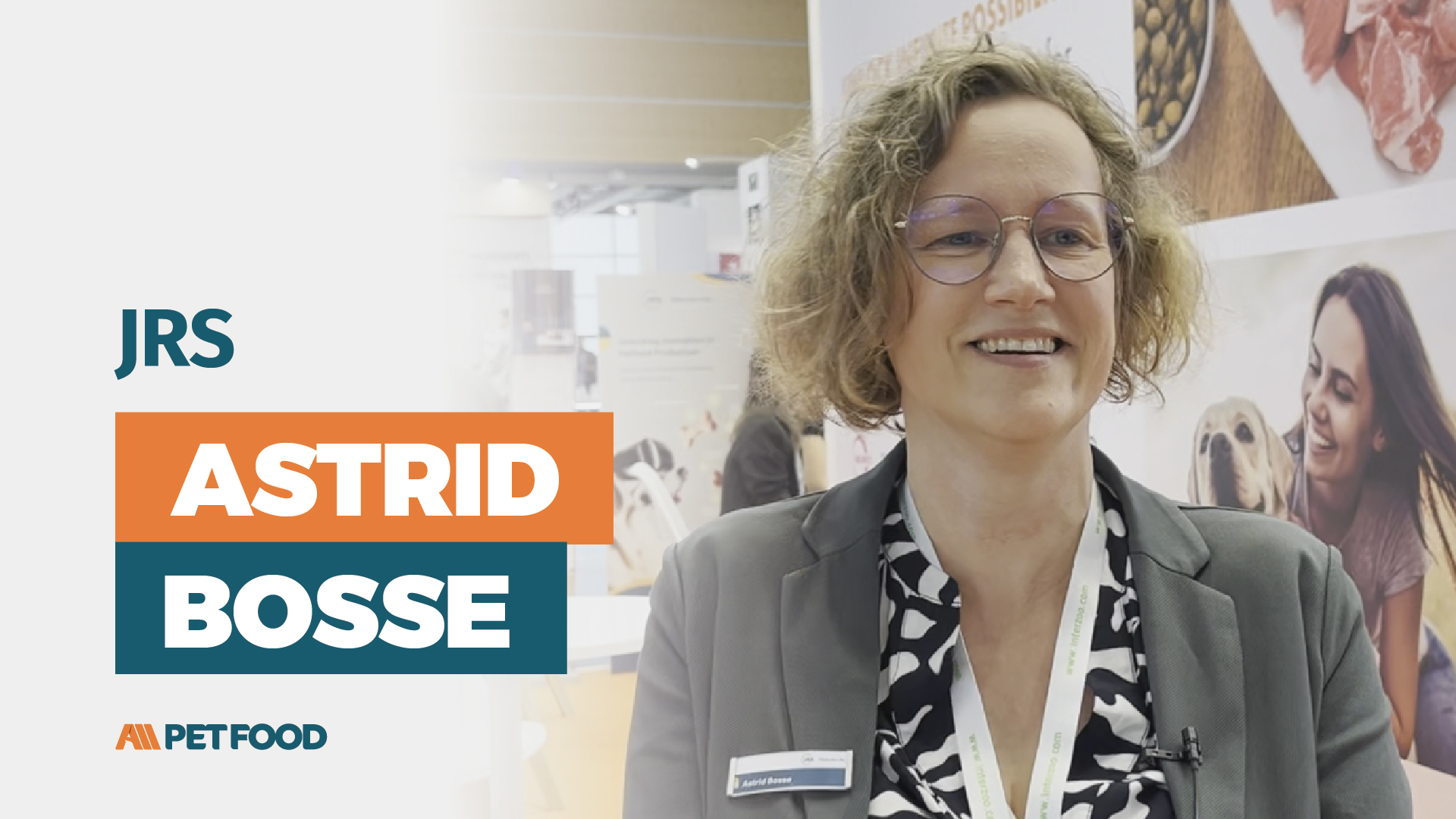 Market Information
Market Information
2+ MIN
24/05/2024
Exclusive Interview with Dr. Astrid Bosse at Interzoo 2024
At the Interzoo 2024 event, held in Nuremberg, Germany, we had the opportunity to interview Dr. Astrid Bosse, JRS´s Scientific Advisor and Nutritionist. During the interview, Dr. Bosse shared valuable insights regarding the job JRS is doing in the pet food industry and its positive impact on pet health.
Dr. Bosse highlighted how JRS is dedicated to improve animal nutrition through high-quality fiber ingredients that promotes pets well-being.
About the company:
JRS was established in 1878 in southern Germany and, today, has become a global leader in sustainable and functional plant fiber technology.
With more than 3,500 employees in over 90 locations worldwide, they're a reliable technology and systems partner for a wide range of industries.
For more than 60 years, they've been pioneers in the manufacture of high-quality fiber ingredients for pets. The experience and dedication have made JRS a global expert in natural, healthy and sustainable animal nutrition solutions. The production of high quality, nutritious ingredients is carried out under controlled conditions, ensuring complete product integrity and traceability. This allows pet food manufacturers to have full confidence in the quality and safety of the ingredients.
JRS Petfood offers options for all pet food categories, benefiting pets at all stages of their lives and improving the pet food production process. JRS ingredients are scientifically proven and their team of experts is always ready to collaborate with customers to analyze problems and develop customized fiber solutions. These ingredients not only bring added value to pets, but also to pet food manufacturers, ensuring optimal and sustainable nutrition.
We invite you to learn more on their minisite or visit the website HERE.
Source: All Pet Food.
 Market Information
Market Information
3+ MIN
22/05/2024
New Symrise CEO Parisot looks optimistic into 2024 at the Annual General Meeting
'I feel delighted to speak at the Symrise Annual General Meeting for the first time as the Group's CEO,' said Dr. Jean-Yves Parisot. 'We offer our shareholders good opportunities for successful business development, also amid ongoing global uncertainties. Our diversified portfolio, our high level of innovation and our global positioning contribute significantly to this. Our pioneering role in sustainability represents a further key to our success. We want to continue intensifying our efforts in this area until we have achieved net-zero status at all levels by 2045.'
In his presentation to the nearly 350 shareholders present, the new CEO started with a look at the 2023 fiscal year. The year turned out a successful one also with its geopolitical uncertainties. It produced stable organic sales growth of just under eight percent. Both divisions (Taste, Nutrition & Health as well as Scent & Care) recorded significant growth.
In his outlook for the 2024 fiscal year, Parisot stated that Symrise feels confident that it will be able to continue along this successful course. In the first quarter of 2024, the Group managed to increase sales by just under 11% compared with the first quarter of 2023. Overall, Symrise is aiming for organic growth of between five and seven percent this year. This would place the company at a faster growth rate than its respective market. To increase profitability, the company has also launched an efficiency program worth EUR 50 million.
Voting results available online
After the presentation of the business figures, the agenda continued to cover the agenda items up for vote. They included the following topics:
- Appropriation of the accumulated profit for the 2023 fiscal year
- Resolution to discharge the members of the Executive and of the Supervisory Board for the 2023 fiscal year
- Appointment of the financial and other auditors
- Approval of the Remuneration Report
- Amendments to the Articles of Incorporation to enable virtual Annual General Meetings and on the arrangements for the participation of Supervisory Board Members
- Removal of the existing Authorized Capital and the creation of a new Authorized Capital
- Removal of the existing authorization to issue bonds and to create a new conditional capital
The shareholders approved all items on the agenda with a large majority. The detailed voting results are available for download at https://www.symrise.com/investors/annual-general-meeting/
About Symrise:
Symrise is a global supplier of fragrances, flavorings, cosmetic active ingredients and raw materials, as well as functional ingredients. Its clients include manufacturers of perfumes, cosmetics, food and beverages, the pharmaceutical industry and producers of nutritional supplements and pet food.
Its sales of approximately € 4.7 billion in the 2023 fiscal year make Symrise a leading global provider. Headquartered in Holzminden, Germany, the Group is represented in more than 100 locations in Europe, Africa, the Middle East, Asia, the United States and Latin America.
Symrise works with its clients to develop new ideas and market-ready concepts for products that form an indispensable part of everyday life. Economic success and corporate responsibility are inextricably linked as part of this process. Symrise – always inspiring more…
Source: Symrise.
 Manufacturing Process
Manufacturing Process
4+ MIN
21/05/2024
KSE commissions new container shuttle system for premix production
We are talking with Dennis van Lankeren, Business Unit Manager ALFRA, and Bas Versluis , Head of Sales at KSE. Bas: ''The ALFRA Automatic Container Transfer (ACT) consists of a modular portfolio based on containers that provides process flexibility and minimal contamination. The system uses container shuttles (CS) to transfer products and components without contamination. The WP addition clarifies that in addition to internal transfer, the system has also integrated dosing and weighing.'' Lower building height and higher silos Transfer by way of containers is not new for ALFRA, but combining this with dosing and weighing is. Dennis adds: ''Until recently, when silos were located at the top of the plant with a dosing installation, it was necessary to place a scale underneath to dump the correct amount into the movable container. With the CS-WP system, ''moving'', ''dosing'' and ''weighing'' have been added to its functionalities. This means an extra weighing system, that would require extra height, can be eliminated. In other words: the plant can be constructed with a lower building height or the new available height can be used to build higher and larger silos." Carriers and macros In the premix production process, the CS-WP system is suitable for larger components, such as carriers and macros. Because of the drop height between the silo outlets and the scale, it is not possible with this solution to dose small quantities, such as micro components, with sufficient accuracy. These can be prepared compactly on another dosing unit that works in parallel to be picked up by the container and transferred along with the large components to, for example, the mixer. This means the full batch remains in the same container during the entire process. The customer's choice for choosing the CS-WP solution The customer in the U.S. opted for the CS-WP solution because of their urgent requirement to optimally utilize the available space in their existing facility. Integrating the system in their plant allowed them to save valuable height that would otherwise be taken up by a conventional weighing system. This resulted in height savings of approximately 4-5 meters. The fact that the CS-WP system guarantees a low contamination value was also a reason for the customer to buy this system. The other customer in Spain, who is in the feed additives industry, installed the CS-WP solution also because of the specific requirements regarding contamination control. By using the CS-WP, macro ingredients can now be safely transferred to three different mixing lines. Alternative solutions in the market Dennis explains that several alternatives were considered by both customers. One alternative involved a traditional pneumatic transfer system, but this solution turned out to be disadvantageous because of hygiene issues and high energy consumption. The second alternative involved a container concept based on AGVs (Automated Guided Vehicle), which however, is complex to pair with several parallel production lines within a plant. In the end, KSE's CS-WP concept proved to be the most suitable and integratable, and resulted in maintaining the desired compact building height. Intensive development process The development process of the CS-WP involved some challenging design issues, including balancing the setup. With a footprint of approximately 1.5 meters x 1.5 meters and a height of 5.0 to 6.0 meters, this resulted in a column four times as tall as it is wide. This created a potential toppling hazard, especially when the system moved with weight on top. To prevent this, rollover safeguards were installed. The system's dust extraction proved to be another puzzle. Customers who purchase an ACT system usually do so because of the need for a clean work environment with minimal contamination hazard. However, when dust escapes at the open joints during movement, this requirement is not met. In addition, because of accuracy, the extraction must not affect the weighing signal during the dosing process. After extensive consultation and advice with suppliers, several concepts have been worked out, hereby coordinating mechanics, electrical and software. There are not two available variants: one where the dust collected from the filters goes back into the product, which can result in minor contamination, but ensures that all the product is moved along during the process. There is also a variant in which the dust extraction is taken as waste to an external discharge location without contamination, but thus resulting in waste. The choice between these two variants depends on the customer's requirements. Application Bas concludes, ''This KSE concept finds its application mainly in the premix and pet food industry. For application in the compound feed industry, the system is generally too small and relatively expensive.'' Bas adds that the customers mentioned in this article wish to remain anonymous for the time being, but that field results will be available soon. Source: KSE Process Technology.
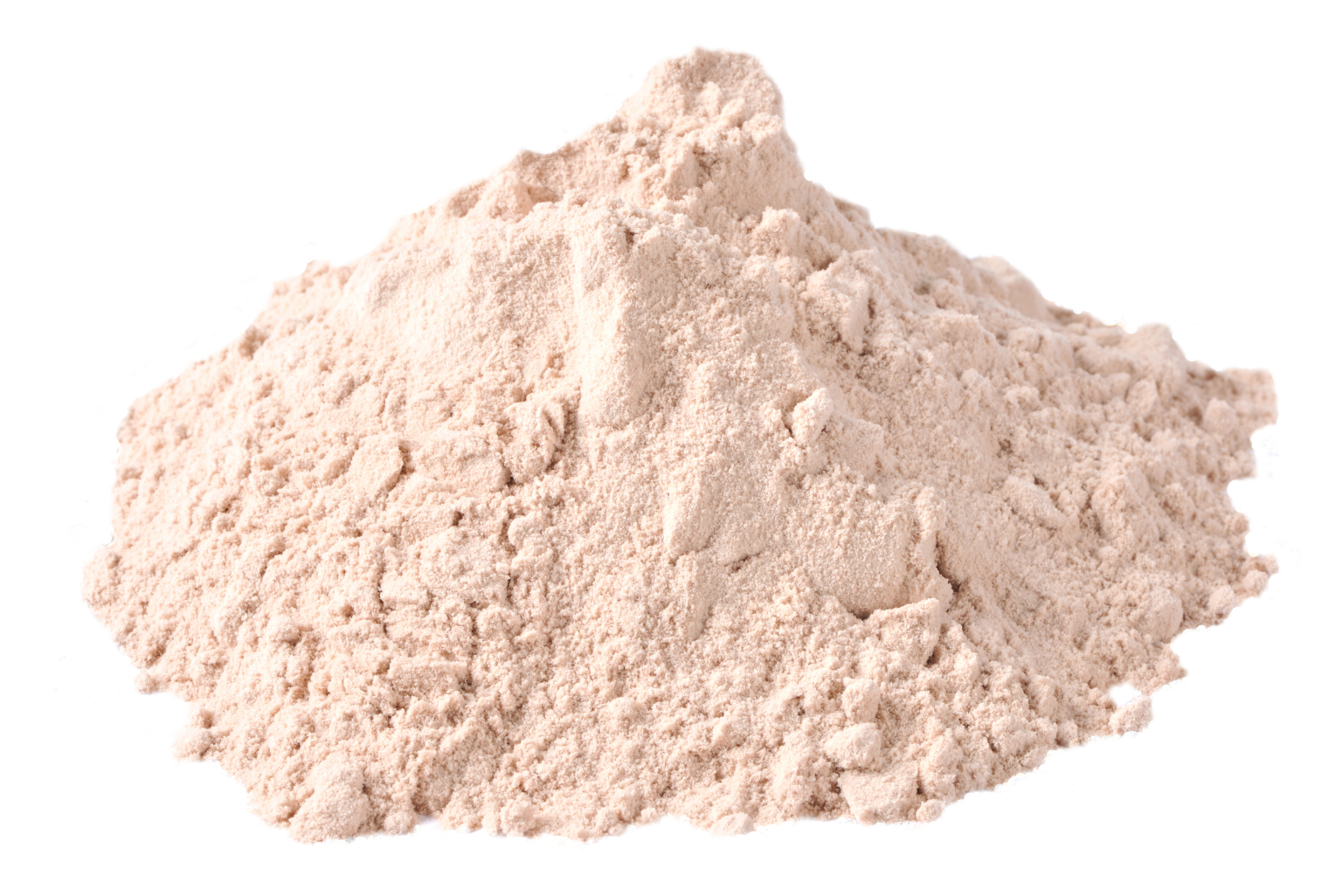 Ingredients
Ingredients
6+ MIN
21/05/2024
Spray-dried plasma: Nutritional value and its effects in pet food processing (Part 2 and 3)
The high protein content of SDAP is also accompanied by an adequate composition of essential amino acids. For dogs, the most limiting amino acid in SDAP is methionine, like other animal ingredients. As the graphic in Table 1 shows, SDAP is high in protein and has an adequate amino acid score (EAA). The EAA is calculated by the concentration of a particular essential amino acid within the protein of the ingredient and divided by the concentration of the same amino acid relative to the protein recommendation for the species. This is a measure to identify the relative concentration of each amino acid in the protein source to classify it as limiting or not in the ingredient or diet. Values above 1.0 for the amino acid score indicate that the amino acid is in adequate concentration in the protein source. Table 1 shows the amino acid composition of some commonly used dry feed ingredients, with the EAAs of the main limiting amino acids in each. Table 1: Amino acid composition of protein sources used in dog and cat foods. FEDIAF - Table of nutritional recommendations for adult dogs and cats in maintenance; SDAP – spray dried plasma; PM – Poultry Meal; MBM – Meat and Bone Meal; EP – Egg Powder; SB – Soy Bean; SPC – Soy Protein Concentrate; CG – Corn Gluten; WG – Wheat Gluten. Due to the spray-dry processing, plasma maintains its high solubility, which positively affects its digestibility characteristics and processing effects. The digestibility coefficients of this ingredient for dogs and cats have not yet been determined, but its effects when included in pet food on dietary digestibility have been demonstrated. Quigley et al. (2004) conducted 3 experiments in dogs, with the inclusion of up to 3% of SDAP in the animals' diets, and compared with a negative control treatment. These authors found consistent results in increased apparent dry matter (DM) digestibility in all trials and increased crude protein digestibility in two studies. Similar results were found by Rodriguéz et al. (2016) using wet cat diets containing 3% SDAP or 3% wheat gluten (WG) as binders. These authors found increased digestibility of DM in animals that consumed the diet with SDAP. Recently, we also included 1% or 2% SDAP in dog diets, and its effects on digestibility coefficients were determined. As shown in Figure 1, there was a gradual increase in the digestibility of organic matter and crude protein as the inclusion of SDAP increased. Figure 1: Digestibility coefficients of organic matter and Crude Protein in dogs fed diets containing 1% or 2% Spray-dried Animal Plasma (SDAP). The protein portion of plasma, which corresponds to 80% of the ingredient is mainly composed of albumin, immunoglobulin G (IgG), and coagulation proteins (Aldrich, 2012), which are preserved by the spray-drying process while maintaining their solubility (Patel et al., 2009). Due to this, SDAP has important functional properties in wet food processing in the form of pâté or chunks in sauces as an emulsifying and binding agent (Aldrich, 2012), playing a similar role to hydrocolloids. Hydrocolloids represent a diverse group of long-chain polymers that form gels by thickening, emulsifying, coating, and stabilizing food components (Li and Nie, 2016). Although SDAP is not classified as a hydrocolloid, it has very similar properties and is widely used in wet food for this purpose. In Brazil, many wet food products contain SDAP in the composition, associated or not with other agents such as xanthan gum, guar gum, carrageenan gum, modified starch, wheat gluten, soy protein, and whey protein, which have similar functionalities in the process. Wet food is mainly formulated with by-products from the meat industry, with high protein and lipid content and high moisture content (70-85%). To avoid phase separation and promote better texturization and homogenization, gelling and emulsifying agents are used (Dainton et al., 2021). In a study comparing the technological properties of binders commonly used in wet food in the form of chunks in sauce or loaf, Polo et al. (2006) found that the inclusion of SDAP at concentrations of 1.5% and 2.5%, respectively, increased the breaking strength and reduced water loss relative to wheat gluten. In another study by these same authors (Polo et al., 2013), the inclusion of 2.0% SDAP was compared with 2%, 4%, or 6% of wheat gluten, and similar results were verified, with 2.5 times increase in the food's breaking strength and an improvement in juiciness due to an increase in the absorption of water from the sauce in contact with the food, of approximately 20%. Due to its high-water retention capacity, when included in high concentration in the diet, the SDAP gives hardness to the pâté, as can be seen in the Figure below, when compared to WG at the same concentration. Figure 2: Photo of pâté produced with SDAP (left) or Wheat Gluten (right), at the same inclusion (Polo et al., 2013). These properties, such as increased digestibility, especially of DM and CP, contribute to the reduction of excreted fecal volume and, when added to its emulsifying properties and as a binder, make SDAP a potential replacement ingredient for hydrocolloids, which have been associated with negative effects on fecal digestibility and quality (Craig, 21; Harper and Siever-Kelly, 1997; Karr-Lilienthal et. al, 2002) as well as inducing intestinal inflammation and gastric ulcerations, which have been described in rats, mice, rabbits, and guinea pigs ingesting hydrocolloids such as carrageenan gum or carboxymethyl cellulose (Martino et al., 2017; Wu et al., 2017). Conclusion Nowadays, the SDAP has been widely used in wet food due to its emulsifying, binding, and texturizing properties, with the objective of improving the presentation of food and adding to the nutritional composition, different from the additives commonly used for this purpose. Additionally, in dry food, this ingredient has demonstrated that, even at low inclusions in the formulations, it promotes significant increases in diet digestibility. In addition to the properties mentioned above, SDAP has some functional properties, especially prebiotic and immunomodulatory effects, which will be discussed in the next edition. By: Ricardo Souza Vasconcellos, Lucas Bem Fiuza Henriquéz, Patrick Lourenço dos Santos. Source: All Pet Food Magazine. References Aldrich, G. Plasma thermoplastic gel with pet health benefits. Accessado em: https://www.petfoodindustry.com/articles/4545-plasma-thermoplastic-gel-with-pet-health-benefits. (December-21-2012) Craig, J.M. Additives in pet food: are they safe? J Small Animal Practice 2021, 62, 8, 624–635. Dainton, A.N., Dogan, H., Aldrich, C.G. The effects of select hydrocolloids on the processing of pâté‐style canned pet food. Foods 2021, 10, 10. FEDIAF – The European Pet food Industry Federation. Nutritional Guidelines for complete and complementary foods for dogs and cats. FEDIAF press, Bruxeles, Belgium, 2017, p.49. Harper, E. J.; Siever-Kelly, C. The effect of fibre on nutrient availability in cats of different ages. In: Recent Advances in Animal Nutrition in Australia. Eds J. L. Corbett, M. Choct, J. V. Nolan and J. B. Rowe. University of New England, Armidale. 1997, p.110-116. Karr-Lilienthal, L.K.; Merchen, N.R.; Grieshop, C.M.; Smeets-Peeters, M.J.; Fahey, G.C. Selected gelling agents in canned dog food affect nutrient digestibilities and fecal characteristics of ileal cannulated dogs. Arch. Tierernahr. 2002, 56, 141–153. Li, J.M., Nie, S.P. The functional and nutritional aspects of hydrocolloids in foods. Food Hydrocolloids 2016, 53, 46–61. Martino, J. V., Van Limbergen, J. & Cahill, L. E. The role of carrageenan and carboxymethylcellulose in the development of intestinal inflammation. Frontiers in Pediatrics. 2017, 5, 96. Patel, R.P., Patel, M.P., Suthar, A.M. Spray drying technology: an overview. Indian J Sci Technol 2009, 2, 10. Polo, J., Rodríguez, C. Improving the juiciness of pet food chunks and pouches with plasma. Petfood Industry. 2013. October, 36-40. Polo, J., Rodríguez, C., Saborido, N., Ródenas, J. Functional properties of spray-dried animal plasma in canned pet food. Anim Feed Sci Tech 2005, 122 ,3–4, 331–343. Quigley, J.D., Campbell, J.M., Polo, J., Russell, L.E. Effects of spray-dried animal plasma on intake and apparent digestibility in dogs. J Anim Sci 2004, 82,1685-1692. Rodríguez, C., Saborido, N., Ródenas, J., Polo, J. Effects of spray-dried animal plasma on food intake and apparent nutrient digestibility by cats when added to a wet pet food recipe. Anim Feed Sci Tech 2016, 216, 243–250. Wu, Y., Pan, L., Tian, Q., Piao, X. Comparative digestibility of energy and ileal amino acids in yeast extract and spray-dried porcine plasma fed to pigs. Archives of Anim Nutr 2018, 72, 1, 76–84.
 Veterinary
Veterinary
3+ MIN
20/05/2024
Carbohydrates in dog and cat food
What are dietary carbohydrates?
Carbohydrates ('carbs') are a group of compounds with a common biochemical structure based on carbon (C), hydrogen (H) and oxygen (O). Carbohydrates enclose sugars, starches and dietary fibres. The simplest molecules within carbohydrates are sugars (monosaccharides and disaccharides). Longer chains and structures made of those sugars are complex carbohydrates like starches (polysaccharides) and dietary fibres (oligo and polysaccharides). Sugars and starches are called digestible carbohydrates.
What is the main purpose of digestible carbohydrates in pet foods?
Digestible carbohydrates are a direct source of glucose, an important source of energy for the body, and the main one for some tissues like the brain and red blood cells. When carbohydrate supply is limited, glucose can also be synthesised from proteins and other compounds.
Dogs and cats have the digestive enzymes necessary to break down digestible carbohydrates into sugar units, which can be absorbed in the small bowel. An exception is milk sugar, lactose, which is not adequately digested in adulthood by majority of dogs and cats and can cause gastrointestinal upset.
Starch also has important technological properties for dry kibble manufacturing, since its gelatinization is a crucial part of the extrusion process. (link to how pet food is made factsheets)
Please find more information here:
FEDIAF Expert Review – Carbohydrates
What about fibre?
Dogs and cats do not have the enzymes capable to break the linkages between sugars in fibre; therefore, fibre cannot serve as a direct source of glucose or energy to the animal. However, once fibre reaches the large intestine, it is fermented by the microbiota (mainly bacteria and yeasts) to provide energy to bacteria and large intestinal cells. The degree of fermentability varies depending on the fibre type.
Fibre has several benefits to pets. Some fermentable fibres known as prebiotic fibres promote the growth of beneficial intestinal microbiota which can help reduce harmful bacteria colonization. The fermentation products of fibre are beneficial to large intestinal cells. Non fermentable fibre promotes regular bowel movements and regulates faecal consistency. Moreover, since fibre provides almost no calories to the dog and cat, it can be used to deliver bulk and satiation for pets prone to weight gain.
Most pet foods use ingredients to provide a mixture of fermentable and non-fermentable fibres, offering the benefits of both fibre types.
What are the main sources of carbohydrates in pet food?
The common starch sources in pet foods are cereals ('grains'), legumes and root vegetables. Starch needs to be well cooked to be properly digested and to prevent intestinal upset.
Fibre is provided by ingredients such as whole grains, purified cellulose, beet or chicory pulp, psyllium seeds, fruit and vegetable fibres, inulin and FOS (fructooligosaccharides).
Benefits of carbohydrates in pet food
Although not an essential nutrient, digestible carbohydrates provide an easy to use source of energy and glucose, which allows for the formulation of moderate fat diets and help with formulation of low-calorie diets to help manage weight problems. It also helps to spare the use of animal protein, which is a limited resource in pet nutrition and is associated with increased carbon footprint. Dietary fibre is not an essential nutrient either, but it has multiple benefits, such as promotion of a healthy intestinal microbiota, adequate intestinal transit, and satiation.
The main fibre and carbohydrates sources included in pet food also provide important essential nutrients such as vitamins, minerals and fatty acids.
The optimal digestible carbohydrate and fibre intake is going to vary from pet to pet. Please consult with your veterinarian or veterinary nutritionist to choose the best diet for your pet.
Are carbohydrates reported on the pet food label?
EU law determines the mandatory minimal nutritional information on the pet food label, listed under the heading 'analytical constituents' as grams per 100 grams of food as fed (%). This includes protein (or crude protein), fat (or crude fat), inorganic matter (or crude ash) and crude fibre; but does not include digestible carbohydrates. The crude fibre value on the label is the result of chemical analysis which underestimates the total dietary fibre content of the diet; the fibre content in the product is typically higher than reported.
For more detailed information about the carbohydrate content of a specific pet food, contact the manufacturer.
For more information, visit FEDIAF HERE.
Source: FEDIAF.
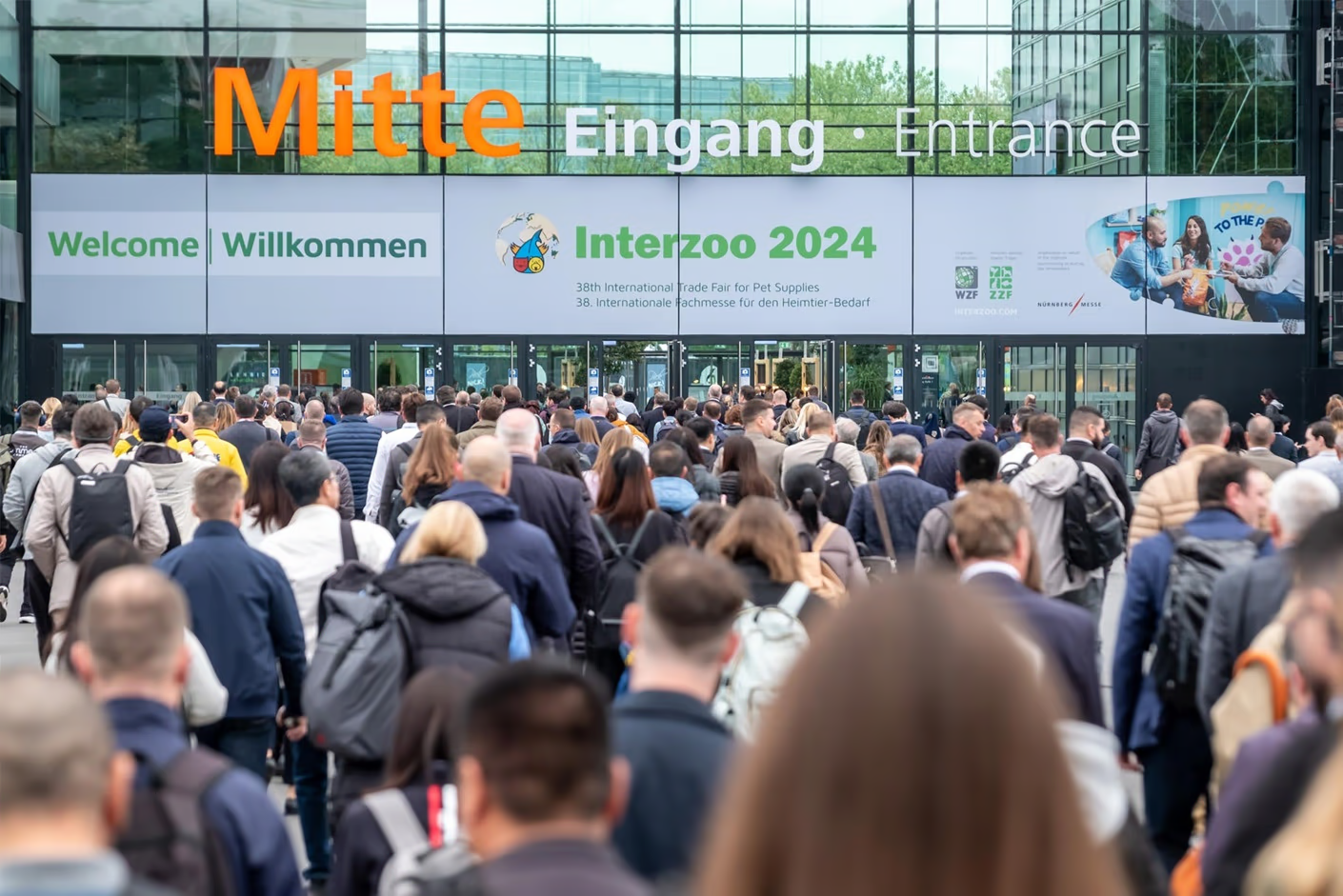 Market Information
Market Information
3+ MIN
17/05/2024
Exclusive Inside Look: Highlights from Record-Breaking Interzoo 2024
Organized by WZF GmbH – Pet Industry Services, the event attracted approximately 37,000 trade visitors from 140 countries, marking a 32% increase compared to the previous event. Additionally, around 2,150 exhibitors from 68 countries showcased the latest innovations in products and services for dogs, cats, fish, small mammals, terrarium animals, and more.
Gordon Bonnet, Managing Director of WZF and ZZF (German Pet Trade & Industry Association and honorary sponsor), expressed his satisfaction with the results: "For many exhibitors and trade visitors, Interzoo is the highlight of the business year. We are delighted to have met and exceeded the high expectations of exhibitors. The continued high internationality of 85% of exhibitors and over 74% of visitors underscores Interzoo's status as the world's number one industry platform."
Norbert Holthenrich, President of ZZF, also highlighted the event's success: "Interzoo 2024 was an enormous success for market participants in the international pet supplies industry. The exhibiting companies set new standards in terms of product quality and stand design, and we were pleased to see how many exhibitors placed the needs of animals at the center of their new products."
Innovation and Trends: The Heart of the Supporting Program
Interzoo 2024 not only stood out for the large number of participants but also for its focus on innovation and industry trends. "Both the German and the global pet market developed positively last year. Global growth of 6 per cent to more than 182 billion euros in sales last year is impressive proof of the economic strength of the pet industry. This market development was reflected in the form of innovative products at Interzoo 2024," says Dr Rowena Arzt, Head of Exhibition at Interzoo organizer WZF.
The solutions of the future were presented and discussed in 36 short presentations on the Fresh Ideas Stage. "The Fresh Ideas Area with its bar area and networking lounge, which was significantly larger than in 2022, was very popular on all days of the trade fair and is firmly established as an ideas hub for the pet industry," says a delighted Dr Arzt. Next to over 70 innovative companies and start-ups at the community stands "International Start-up Area" and "Young Innovators", the Fresh Ideas Stage was the venue for the second Interzoo Fresh Ideas Contest on Friday, 10 May, which awards prizes for the best innovative ideas. First place went to Petnow inc from South Korea, which has developed a facial recognition system for pets based on biometric data, second place to Pawr with a purely plant-based dry dog food and third place to Allkokos GmbH, a manufacturer of small mammal litter made from coconut flakes.
Exclusive Interview with Dr. Rowena Artz
In our exclusive interview with Dr. Rowena Artz, available as a video, she shared insights into the organization and success of the event. She highlighted the excellent teamwork and the record attendance and exhibitors achieved in 2024. Dr. Artz also discussed the conferences and the experts selected, including the fourth edition of a conference on sustainability, and other sessions on innovation and social media.
Comparing this edition to the previous one, she noted that Interzoo 2024 was the largest since its inception, with a notable increase in the number of exhibitors stands and participating countries. Looking ahead, Dr. Artz emphasized the commitment to continue growing and offering new opportunities for startups, with a particular focus on sustainability.
Future Prospects
Interzoo 2024 not only broke records but also set the stage for future developments. The next edition, scheduled for May 12 to 15, 2026, promises to remain a key event in the pet supplies industry.
For more details on the innovations and trends presented, visit the Interzoo Academy website HERE.
Source: All Pet Food.
 Market Information
Market Information
3+ MIN
17/05/2024
Environmental Sustainability
In today's world, protecting the environment and sustainability is a critical priority, and the practice of rendering can provide a solution to help. Rendering is a powerful process to reclaim and reuse animal agriculture resources responsibly, reduce food waste, and find important uses for meat co-products (also called by-products). Rendering uses these leftover materials from animal processing and recycles them for new applications instead of discarding them. Products such as fat, bones, and other animal materials can be reused instead of contributing to waste. Rendering has a (hugely) positive environmental impact and is one of the most sustainable practices we, as a community, can support to improve our carbon footprint, reduce food waste, and return clean water to the environment's natural waterways. It's an often-overlooked industry that equips the entire food processing chain to use food materials more responsibly and sustainably. By reclaiming meat leftovers and including them in other products, such as animal feed, pet food, and renewable biofuels, rendering prevents waste and makes our resources go further for critical needs. How Resilient Rendering Works Because many people consider unused animal co-products or by-products inedible (i.e., meat from the animal that we choose not to eat), these leftovers often end up in landfills. Resilient rendering 'recycles' those co-products into valuable items like pet food and biofuel. Rendering's reduced carbon footprint is a result of using sustainable processing methods. Resilient rendering expands our uses for leftover food products produced from animal agriculture and helps us conserve resources while decreasing food waste across the production chain. Environmental Impacts of Rendering Rendering delivers essential benefits for increased sustainability. Products developed from rendered material follow strict safety standards to provide high-quality products from sustainable materials. Some reasons rendering makes a positive impact on the environment include: Environmental protection: Rendering helps protect the environment with lower greenhouse gas emissions than other disposal methods, decreased energy and water consumption, and more efficient processing technologies. Water reclamation: Rendering reclaims billions of gallons of water that would otherwise be wasted or contaminated. Water reclamation rendering methods improve water quality, naturally releasing water back into the environment through evaporation or returning it to streams and rivers according to federal, state, and local water standards. Food waste prevention: Reclaiming meat leftovers that would otherwise be discarded decreases our food production footprint. It also reduces waste piling up in landfillsas we reuse those co-products instead. Sustainable products: Renderers reclaim and recycle items such as used cooking oil and rendered protein ingredients for renewable diesel, animal feed, pet food, and many other products. Discover How NARA Works for Sustainability The North American Renderers Association (NARA) represents independent renderers and meat processors across the United States and Canada. Their members also include those who support renderers with equipment and services or broker and buy processed rendered products. NARA's mission is to represent the interests of the rendering industry in the political realm, provide resources for industry members and educate the public on the vital work renderers do. They offer a wide range of services and prioritize listening to their members' feedback. Learning about their evolving needs, they strive to provide the support and resources they require most. Also, they're committed to being the voice of the rendering industry to local and national government officials. As a non-profit, NARA is committed to supporting the industry and furthering environmental sustainability efforts in the best way we can. They support those in the rendering industry with trusted resources to help them manage regulatory compliance, optimize rendering processes and promote meat science and technology awareness. NARA advocates on behalf of renderers and aims to spread the word about the rendering industry's vital role in helping to protect and preserve environmental sustainability. They focus on providing innovative solutions for reclaiming meat leftovers and consistently reducing food waste. If you'd like to learn more about NARA, click HERE. Source: NARA.
 Market Information
Market Information
3+ MIN
15/05/2024
Por Iván Franco
Connection and trust: Revolutionizing brands in the pet food world
This shift in thinking leads us to evaluate the key elements in building a brand, from product innovation to social responsibility, which combine to forge a cohesive and resonant brand identity. In this text, we address these topics by highlighting the impact of each element on customer loyalty and satisfaction. Real connections are brand essence Creating a successful brand in the pet food industry means establishing a genuine connection with pet owners. This involves going beyond the product to speak directly to the hearts of consumers, addressing their values, needs, and desires. A comprehensive approach, which ranges from discovering a brand's mission to implementing effective communication and loyalty strategies, is the path to lasting loyalty. For example, let's look at some leading multinational brand experts in connecting with pet owners. Technological innovation is the key to the future In a rapidly saturated market, technological innovation is crucial. On the other hand, developing innovative products that anticipate trends and meet pet owners' expectations is essential to maintain our brand relevance. This ranges from specialized or improved formulas to sustainable practices, as well as the use of technology as a marketing claim, which generates trust and enriches the product experience. Today, there are successful brands that 'sell' technology implicitly and explicitly, particularly in premium foods. Digitization cannot wait in the data era Digital technology has redefined how we interact, and for pet food brands, it is an invaluable tool to increase and make the connection with pet owners ubiquitous. Personalizing the shopping experience and customer service through digital solutions can completely transform brand perception. Sustainability and social responsibility are values that permeate Today, sustainability and social responsibility are not just good practices. These are already expectations consumers have, especially the youngest ones. Brands that demonstrate a real, transparent, and honest commitment to these values not only earn the respect of pet owners but also their loyalty by resonating with their personal principles. An example of social responsibility is carried out by some leading brands by helping abandoned dog communities and donating food to their shelter network. Empower the business by measuring and analyzing data In our journey to connect with pet owners, we cannot overlook the compass that guides us: the power of data. Understanding the importance of measuring and analyzing our efforts allows us to fine-tune our brand strategies with precision. This analytical approach is what helps us ensure that we are not only meeting market expectations but exceeding them, raising the bar for what it means to be a brand in the pet food world. This area is where we are most behind in the region since there are only a couple of examples of brands that do not skimp on analyzing because they know that the returns are juicy. Conclusion: generating brands that inspire loyalty Building a brand in the pet food world goes far beyond selling a product with pretty packaging and a catchy name. It's about creating a meaningful experience and lasting relationship with pet owners. By holistically addressing innovation, technology, sustainability, and data analytics, we can ensure the relevance and competitiveness of our brands over time and in saturated environments. Brand architecture is the skeleton on which the entire identity of a company is built and organized, ensuring coherence and clarity in its offer to the market. It facilitates consumer understanding, reinforcing their perception of value and loyalty towards the brand. This strategic approach is crucial to differentiate itself in highly competitive markets, guiding the expansion and evolution of the brand with a vision for the future. By Iván Franco. Source: All Pet Food Magazine.
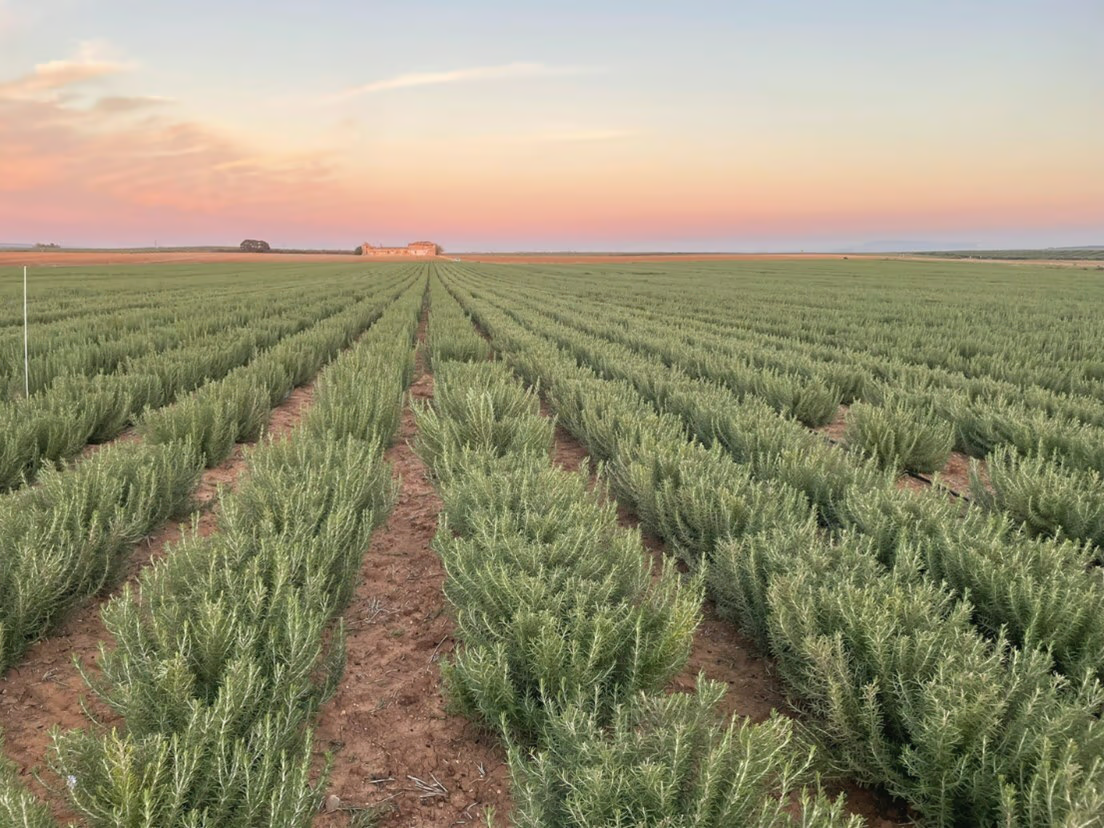 Ingredients
Ingredients
3+ MIN
13/05/2024
Kemin Industries' request for use of rosemary extract as antioxidant feed additive for cats and dogs authorized by European Commission
Kemin Industries, a global ingredient manufacturer that strives to sustainably transform the quality of life every day for 80 percent of the world with its products and services, submitted a request to the European Commission to allow the use of liquid rosemary extract as an antioxidant feed additive for cats and dogs and has received authorization through Commission Implementing Regulation (EU) 2024/1068. The submission leading to this authorization was initiated by Kemin Nutrisurance, the pet food and rendering technologies business unit of Kemin Industries, and the resulting regulation was published in the Official Journal of the European Union on April 15. The Commission Implementing Regulation (EU) 2024/1068 categorizes and approves of the additive as a "technological additive" within the "antioxidants" functional group and goes into effect May 5. Before this groundbreaking approval, the European Union's pet food market primarily consisted of tocopherols for antioxidants, with limited options for antioxidant molecules of natural origin. This new addition of rosemary extracts not only expands the range of available antioxidants but also addresses critical supply chain challenges. "By diversifying sourcing and mitigating dependency on a single ingredient, Kemin Nutrisurance reinforces its commitment to sustainability and supply resilience in the pet food industry," said Beth Mann, Global Director of Quality and Food Safety, Kemin Nutrisurance. "Rosemary extract is a versatile and effective antioxidant that can help pet food manufacturers meet the growing demand for clean label, high-quality, and environmentally friendly products." Since 1996, Kemin's Specialty Crop Improvement team has used conventional breeding methods to continually develop lines of proprietary rosemary with high levels of carnosic acid, a molecule with powerful antioxidant capabilities. Today, Kemin is one of the most vertically integrated suppliers of plant-based ingredients. Across the supply chain, Kemin controls the breeding, plant selection, growing, harvesting, and extraction for many of its specialty crops, allowing Kemin to ensure that every batch of product is consistent. "We are thrilled to receive this authorization from the European Commission, which is the result of decades of research and development, as well as close collaboration with the authorities," said Dr. John A. Greaves, Vice President of Specialty Crop Improvement, Kemin Industries. "This is a game-changer for the pet food industry, as it opens new possibilities for natural and sustainable pet nutrition." Kemin Nutrisurance is proud to offer rosemary extract as part of its portfolio of innovative solutions for the pet food industry. Kemin is committed to providing customers with the best quality, safety, and performance for their products, as well as supporting them with technical expertise and regulatory assistance. From oxidation control and food safety to palatability and nutrition, Kemin is Compelled by Curiosity™ to ensure pets around the world are living happy and healthy lives. Click here to learn more about Kemin's Specialty Crop Improvement program. About Kemin Industries Kemin Industries (www.kemin.com) is a global ingredient manufacturer that strives to sustainably transform the quality of life every day for 80 percent of the world with its products and services. The company supplies over 500 specialty ingredients for human and animal health and nutrition, pet food, aquaculture, nutraceutical, food technologies, crop technologies, textile, biofuel, and animal vaccine industries. For over half a century, Kemin has been dedicated to using applied science to address industry challenges and offer product solutions to customers in more than 120 countries. Kemin provides ingredients to feed a growing population with its commitment to the quality, safety, and efficacy of food, feed, and health-related products. Established in 1961, Kemin is a privately held, family-owned-and-operated company with more than 3,000 global employees and operations in 90 countries, including manufacturing facilities in Belgium, Brazil, China, Egypt, India, Italy, San Marino, Singapore, South Africa, and the United States. Source: Kemin.
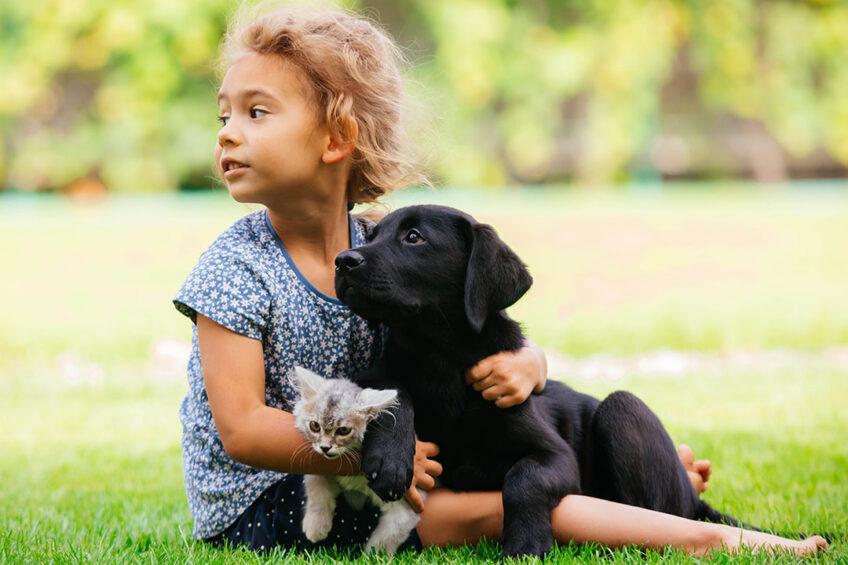 Formulation
Formulation
4+ MIN
09/05/2024
Yeast nucleotide advancements in pet food
What is the nucleotide?
From a genetic point of view, nucleotides are an important part of cells. It is a monomer that makes up DNA (genes) and RNA (ribonucleic acid) and plays an important role in cell structure, metabolism, energy and regulatory functions.
From the perspective of application, nucleotides play an important role in the immune regulation, brain development and intestinal flora improvement of pets, especially newborn and young pets, and can also improve the immunity of pets.
From a source, nucleotides are also found in food. For example, fish, animal organs, fungi, etc., of which yeast is particularly rich in nucleic acid content, and yeast nucleotide content is more abundant after industrial nucleotide enzymolysis.
Why the nucleotides need to added in pet food?
Studies have found that although the pet body can synthesise nucleotides itself, the nucleotides synthesised in the body cannot meet the needs of various tissues with high metabolism, such as the immune system and intestinal tissues. The lack of nucleotides in pet food can affect the heart, liver, intestine and immune function of pets.
The application trend of yeast nucleotides in pet food
Yeast nucleotides improve pet intestinal health
Nucleotides play an important role in the gut, promoting the growth, development and repair of intestinal cells. Nucleotides can stimulate the proliferation of beneficial bacteria in the body and effectively reduce the probability of diarrhoea in young pets.
Nutritional studies have shown that injection of nucleotides and the addition of nucleotides to infant formula can improve intestinal health and immune system development in infants and young children. Because nucleotides and small peptides can maintain intestinal health, adding yeast source nucleotide nutrition to pet food fed by young dogs and cats can effectively improve the diet structure and promote intestinal health of young pets.
The addition of yeast nucleotide to pet cat food can improve the balance of intestinal flora. The experimental study of yeast nucleotide in pets conducted by Beijing Academy of Agricultural Sciences shows that the abundance of bifidobacteria in the added yeast nucleotide group is higher than that in the treatment group, and the lactobacillus abundance in the yeast hydrolysis group is also higher than that in the control group and other treatment groups. The results showed that adding yeast nucleotide improved the intestinal tract of pet cats better than other treatment groups. (Figure 1)
At the same time, the effects of yeast nucleotide addition on the contents of indole and skatole in pet cat faeces were detected. The test results showed that after the addition of yeast nucleotide, yeast nucleotide significantly reduced the contents of skatole and indole in faeces, effectively increased the content of bifidobacterium in pet faeces, and improved the intestinal health of pets (Figure 2).
Yeast nucleotides improve the immune system
When pets have some external conditions, such as intestinal damage, rapid growth, too little protein intake or stress problems, the immune system is triggered, the amount of self-synthesis is far from enough to provide support. So this extra intake of exogenous nucleotides optimises its physiological function. Pet mucous membranes, bone marrow, hematopoietic cells and lymphocytes, these tissues are more dependent on exogenous dietary nucleic acids as a remedy pathway.
Studies have shown that pet food supplemented with yeast nucleotides can increase phagocytic activity of pet leukocytes and improve the ability of lymphocyte division. After addition of yeast nucleotide, pet vaccination resulted in increased anti-parvovirus antibody titers at 14 days, increased non-specific immunoglobulin levels at weaning, and improved peripheral blood mononuclear cells.
Yeast nucleotide strong freshening agent
Sodium inosine (IMP) and sodium guanylate (GMP) mixtures are used as fresheners in pet food. Umami, as one of the five basic tastes, can bring pleasure to pets and represents the characteristic flavour of most amino acids and nucleotides
Yeast nucleotides are added with nuclease, so that the nuclease in yeast is decomposed into four free nucleotides (UMP,GMP,CMP,AMP). The four free nucleotides in the product have very good flavour and nutrition enhancement, and are suitable for pet food industry with better flavour.
The application prospect of yeast nucleotide feed additives
The raw materials of yeast nucleotides are extensive, the extraction technology is mature, rich in nucleotides can promote the healthy development of the intestines of pets, improve disease resistance and immunity, in addition, its degradation products such as IMP, GMP, etc. are themselves a kind of substances that affect the flavour, can indirectly improve the nutritional value of pet food, and commodity value, which is of great significance in pet nutrition.
Source: All About Feed.
 Packaging
Packaging
2+ MIN
08/05/2024
Siegwerk’s new coatings enable recyclable monomaterial pet food packaging
Printing ink and coatings leader Siegwerk has announced a breakthrough in sustainable pet food packaging. Partnering with printing machine manufacturer Windmöller & Hölscher and bag-making and machine producer B&B, Siegwerk has developed a fully recyclable monomaterial pouch for dry pet food using its CIRKIT functional coatings. This innovation addresses increasing pressure from EU regulations on packaging circularity. 'New approaches are needed to meet the upcoming regulatory requirements for circular packaging,' said Belal Habib, head of Brand Owner Collaboration at Siegwerk. 'The challenge is to find a recyclable design that also meets the respective performance requirements of the packaging.' Pet food packaging needs to be food-safe and have specific barrier properties such as grease resistance, in order to maintain freshness and structural integrity. Traditionally, these requirements meant complex, non-recyclable multimaterial structures with metallised layers. 'The problem: they are not recyclable,' added Habib. 'This is where innovative barrier coatings applied in thin layers and inline with regular printing inks can help to switch from an incompatible multimaterial structure to a fully recyclable monomaterial solution in the sense of a circular economy.' The solution utilises two CIRKIT coatings: CIRKIT GreaseBar: An inline-printable grease barrier coating. CIRKIT HeatGuard: A coating that enhances sealing efficiency and heat resistance on film surfaces, also inline-printable. These coatings, combined with full polyurethane inks suitable for mechanical recycling, enable the mono-polyethylene bag to achieve the same performance as traditional multimaterial structures while being fully recyclable. Importantly, the inks and coatings are solvent-based, deinkable, and inline-printable without sacrificing print quality. 'Together, we have succeeded in developing an innovation that is circular, delivers on performance and maintains current process efficiencies due to inline and high-speed conversion,' said Habib. 'This shows that, by joining forces, we are in a position to make recyclable monoplastic packaging a reality and thus counter the still wide presence of multimaterial laminated structures with future-oriented flexible packaging solutions made for circularity.' Siegwerk's expertise spans the entire packaging life cycle, from raw material selection to recycling. This allows it to partner with companies to redesign packaging structures for sustainability according to current guidelines. Source: Packaging Gateway.
 Dogs
Dogs
7+ MIN
07/05/2024
Worth begging for
Treats and chews are a hot category for pet specialty retailers catering to dog and cat owners. Pet owners want options with which they can reward their beloved animals but are often still seeking products that have added benefits or make for a healthy choice. "Over the past two years, we saw sales of collagen sticks skyrocket, but not enough to oversell bully sticks or more traditional chews," said Marcus Maximo, CMO at Natural Farm, a manufacturer based in Atlanta. "This makes me believe the trends are still on adding value to popular chews such as bully sticks, collagen or yak cheese by bringing to the market more unique shapes and size variations, combining proteins and adding flavors. Anything that brings value and quality and at the same time makes them more affordable is part of the trend." When shopping for treats and chews, Maximo said pet owners will look at how safe a product is and what benefits it might provide to their pet. Others factors include the label, how clean the ingredients are and how reliable the company is, he said. "It is always a mix between benefits and safety when shopping for treats and chews," Maximo added. Natural Farm recently introduced two products. Its Stuffed Cheek Roll is an alternative to stuffed bones, which always raise some concern as they can splinter, Maximo said. It comes in 5 to 6 inches or 9 to 10 inches and in different flavors. The second product, Power Cheese, is part of Natural Farm's Power Chew line. "It is an alternative chew to traditional yak cheese," Maximo said. "This product combines a hard cow milk cheese on the inside with beef pizzle on the outside. This is a win-win chew, packed with protein that lasts longer than traditional yak cheese. It is made by Natural Farm in our facilities in Brazil so we can guarantee quality, transparency and safety, which is something you can't find with traditional yak cheese from Nepal." There's no doubt that yak products are all the rage. Sherry Redwine, owner of Odyssey Pets, a pet store in Dallas, said that the biggest trend she's noticed is yak chews flooding the market. "It seems everyone and their yak are getting on this bandwagon," she said. "They now come in flavors too, like strawberry, pumpkin and blueberry. And, of course, collagen chews are hot hot hot—and not going away anytime soon." Redwine said she has also seen private label products gaining traction in this category. "There are now companies out there doing things on a smaller scale so that single-store independent retailers can now get in on the action," she continued. "It reinforces your brand and keeps your name top of mind with your customers." Cost is a factor in chew purchases, said Jason Ast, co-owner of Just Dog People, a pet store in Garner, N.C. Pet owners are willing to invest in a good chew, but they want to feel they are getting value out of it. "Customers are always looking for the best bang for their buck," he explained. "They want long-lasting chews that are affordable. This is definitely the No. 1 thing people are looking for when shopping for dog chews. Customers also want to know their treats or chews were made in the USA." Ast said that they've also seen a surge in puppies in their area and that many of those pet owners are looking for puppy-safe chews. "That means chews that won't cause puppy teeth to fall out prematurely, and they also want chews that won't break off and end up choking their new fur baby," Ast said. Kim McCohan, chief happiness officer at Bend Pet Express, a retailer with locations in Bend, Ore., said that any alternatives to rawhide—but that still fall into the "solo-ingredient category"—are sought after in chews. "[Earth Animal's] No-Hides are popular but due to their manufacturing process could be financially out of reach for some people," she said. "That is when many turn to cheaper collagen rolls." Alan Snyder, CEO of Frankly Pet, a manufacturer in Milwaukee, said he's noticed functional treats trending. "Everyone loves indulging their pets, but consumers are seeking products that also contain beneficial ingredients to address specific issues such as supporting dental health, mobility and joints, digestive health and more," he said. "Collagen is an ingredient that's very popular at the moment as it helps build up bones, joints and muscles in addition to supporting a healthy coat, skin and nails." Frankly Pet is introducing a new peanut butter flavor to its line of collagen rolls. Made in the USA with American-grade beef, Peanut Butter Chew Rolls feature 90 percent protein and 100 percent collagen. Amy Cairy, vice president of marketing for W.F. Young, maker of Honest to Goodness treats, noted that the emphasis on treats and chews these days is on healthy options. "We have also seen a heightened awareness of the need to 'diversify the diet' as pets, and their people, could all use more fruits and veggies in their daily lives to support overall health," Cairy continued. "This is leading to increasing demand for more plant-based treats to help pet parents add healthy and beneficial options to their treat cabinet." W.F. Young's new Honest to Goodness Plant Snacks for dogs are all-natural, plant-based treats that promote functional health and overall wellness. They are available in six recipes including Happy Feet with Apples and Cinnamon, Way to Glow with Coconut and Flax, Mellow Belly with Pumpkin and Cinnamon, Golden Years with Blueberry and Carrot, Buddy Boost with Cranberry and Pomegranate, and Good Vibes with Chamomile and Ginger. Taking stock of sales trends in the cat chews and treats category, McCohan said that thanks to TikTok and one particular cat account, their stores have seen an uptick in small dental chews. "The cat in this particular account chews hard treats, and the super-close video and sound of this act are so popular that their account has taken off," she said. Redwine noted that single-ingredient, freeze-dried meat treats that are healthy and palatable for cats remain the biggest sellers in her store. Selling more treats & chews Making smart display and marketing choices can help drive purchases of treats and chews. As there are so many options on the market, retailers can help guide pet owners toward the right choice for them. Maximo said that with so many variations, functions and benefits to offer, he recommends displaying chews on a raw bar table. "This is not a new concept, but instead, I'd group them to communicate the simplicity of what they are, their main function, their benefits and then by size recommendations," he said. As treats and chews are often an impulse buy for consumers, Cairy said she recommends creating fun displays and constantly changing them. "Adding seasonal flavors or packaging that fits your display theme can really spur purchases and a sense of discovery and newness for shoppers," she added. "For example, a 'Happy Spring' treat display could feature treats with brightly colored packaging or highlight plant-based formulas." Snyder said retailers have many options when it comes to arranging a treats and chews aisle. "Organizing the products can be done in several ways," he said. "This could be by brand, by all-natural products, by function, made in the USA, treats for training, etc. This helps optimize the shopping experience for pet parents. That said, treats and chews are often impulse purchases, so displaying treats and chews on endcaps leading up to the register can help, too." At Just Dog People, they always have Nylabones and Benebones on a visible wall area since they sell so well, Ast said. "Our body parts can be found on a central display, called the 'Body Parts Bar,' where we have 20 various chews and treats for our furry customers," he continued. "We've found that people enjoy strolling around the body parts bar while shopping—many people are amazed at some of the items for sale—duck heads, chicken feet, etc." McCohan said she tends to display chews based on category at her stores. "If they are inedible, we display those together, while the edible chews are together," she noted. "One of our locations displays all the edible chews in baskets kind of on their side and at an angle. Customers can grab what they want out of the basket but see more of each. Another location displays them in metal buckets on a pole, so there are many height offerings. I will say the location with the baskets down low allows dogs to pick what they want, and I don't think we allow that enough for our pets." To that point, Snyder added that it's advantageous to incorporate a "sampling station" in stores and rotate brands and products on a weekly or monthly basis. He summed up: "Not only would this allow customers visiting the store with their pets to try the treats before buying, but it would help further showcase the quality, texture, smell and taste of products, leading to increased sales and customer satisfaction." Source: Pet Product News.
 Plant Based
Plant Based
3+ MIN
06/05/2024
‘Compelling’ case for vegan pet diets, study’s authors say
A new study of dogs that 'thrive' on a vegan diet, including some with recorded health improvements, is a step towards more sustainable pet feeding plans, its authors say. A leading academic advocate of the approach has claimed the case for it is 'compelling' following publication of the latest paper in the PLoS One journal. Meanwhile, the BVA has indicated that the findings of a long-awaited review of its diet policy could be published this summer. Longest study The latest paper from researchers based in California is thought to be the longest study of its kind into the effects of vegan diets on dogs. A total of 15 participating dogs were fed a commercially available plant-based diet containing pea protein for a year, having been served meat-based alternatives for at least the same length of time before that. The researchers said that approach enabled the dogs to act as their own controls during the study period. The analysis found 12 of them had maintained a normal body condition score during the research period, while three that were either overweight or obese when they enrolled reduced theirs. Heart health Vitamin D levels were normalised during the study period, after seven of the dogs initially presented with insufficient levels, while increased presence of L-taurine and L-carnitine was also recorded. The study further indicated that the use of pea protein as a main ingredient may have improved heart health in some participants, despite recent concerns of a potential link to dilated cardiomyopathy (DCM) cases. The authors said the paper offered evidence-based research of the merits of plant-based nutrition for dogs and was an 'important stepping stone' towards more sustainable feeding plans that they see as necessary on climate grounds. Lead researcher Annika Linde said: 'Evolutionary adaptations have resulted in a digestive system that enables dogs to maintain health on nutritionally complete omnivorous diets, including those free of animal ingredients.' New evidence She added: 'Our study offers new evidence on outcomes in clinically healthy dogs who thrive without consumption of animal-derived ingredients. Notably, foods produced independent of factory farming are also more sustainable and ethical.' The paper's findings have also been welcomed by University of Winchester professor Andrew Knight, who has been at the heart of recent calls for a rethink of wider professional thinking on the issue. He said: 'With 13 studies now demonstrating good health outcomes achieved by nutritionally sound vegan pet diets, and several others demonstrating major environmental benefits, a compelling case now exists for environmentally friendly vegan pet diets.' Stance Amid increasing interest in, and controversy surrounding, the deployment of non-traditional pet diets, the BVA set up a Companion Animal Feeding Working Group to review its stance on the issue last year. The body had previously declined to endorse either a vegetarian or vegan diet for pets, arguing that their usage increased the risk of pet owners failing to provide an appropriate balance of nutrients. But, although the group's work is still said to be ongoing, a BVA spokesperson told Vet Times they 'should have something to share' following the next meeting of the association's council in July. Asked whether that meant a final document was likely to be released around that time, she confirmed that was the case although publication after the following council meeting in September was also a possibility. Source: VetTimes.
 Market Information
Market Information
4+ MIN
03/05/2024
Interzoo 2024 preview: The International flagship event for the pet supplies industry
As the largest and most important meeting place for the international pet supplies industry, Interzoo 2024 (7 –10 May, Nuremberg) will once again be a decisive platform for pet food professionals to gather information about new products and trends in the sector as well as to connect with long-time partners and explore new partnerships. A week that starts with Petfood Forum Europe on Monday, 6 May 2024, and continues with the four-day Interzoo covers the entire supply chain and creative power of the pet food industry through market insights, innovative special shows, and coverage of topical issues like sustainability. As the industry's leading trade fair, Interzoo offers the most comprehensive product overview of all relevant segments in an expanding pet industry. Despite having a much larger exhibition space with an additional two halls compared to Interzoo 2022, the 2024 edition of the trade fair has exceeded the magical 2,000 mark for registered exhibitors and covers an overall exhibition space of well over 140,000 square metres. 'The sold-out Interzoo halls that break records with regard to exhibitor numbers, exhibition space, and internationality show the huge pulling power of Interzoo for the gradually growing international pet supplies industry,' says Gordon Bonnet, Managing Director of WZF and ZZF (German Pet Trade & Industry Association, the institutional sponsor of Interzoo). 'For trade visitors, there is no better opportunity on the globe to experience first-hand the incredible array of new products and exciting companies, to build networks, and to gain inspiration!' International exhibitors The strong international presence at the world-leading fair, which has an overseas exhibitor contingent of around 86%, ensures an unrivalled overview of the global market. After Germany, the countries with the largest numbers of exhibitors are China, Italy, the Netherlands, Turkey, the USA, Belgium and the UK. There will be a total of 15 national pavilions, from Brazil (two pavilions including one devoted to aquariums), Canada, China (two pavilions), the Czech Republic, France, Hong Kong, India, Italy, Korea, Malaysia, Taiwan, the UK and the USA. WZF has noted an increase in registrations for stand space from some European countries, e.g. from Italy (+31%), Poland (+27%), and Turkey (+26%). There has also been stronger demand from outside Europe, e.g. from the USA (+60%), India (+34%), and South Korea, which has almost doubled its display area. China, which only sent 29 exhibitors in 2022 due to pandemic-related travel restrictions, accounts for the largest growth in the display area with a fifteenfold increase. 'The stronger demand across all continents shows how important Interzoo is as a showcase for innovation and a gathering place for industry decision-makers from all around the world,' says Dr Rowena Arzt, Director of Exhibitions at Interzoo organizer WZF. Over 70 exhibitors from Spanish-speaking countries (+19 % compared to 2022) contribute to the great diversity of products at Interzoo 2024, covering a total of about 2.500 square metres of exhibition space. On top of that, the neighbouring countries Brazil and Portugal are present with 26 exhibiting companies and almost 1.000 square metres. Pet food innovation at Interzoo 2024 As in the past, products for dogs and cats account for the majority of the exhibits, with 81.2 percent of all exhibitors representing this segment. The next largest product categories are small animals and rodents (14.1%), aquariums and terrariums (13.3%), ornamental birds (11.6%) and pet food technology (8.4%).1 The rising interest in products and services associated with petfood technology (32% of visitors at Interzoo 2022) is also acknowledged by the supporting programme of Interzoo 2024: The Fresh Ideas Stage in Hall 3 has established petfood as one of its four topics of interest. On the last day of the trade fair, the Stage programme ends with the Fresh Ideas Contest where start-ups from the pet industry will have the chance to present their business idea to the audience and the jury in a short pitch in anticipation of attractive prizes. Many international visitors expected In view of these record-breaking figures, Dr. Rowena Arzt assumes there will be a lot of international visitors: 'The importance of Interzoo as a leading international fair and compass for a diversifying sector makes it the most popular setting for cultivating international contacts, dialogue, and business.' Also, the diverse and up-to-date supporting programme is a big pull factor for a lot of industry experts who gain to seek knowledge about other markets and current topics. On 7 May 2024, the first official day of Interzoo 2024, the supporting programme focuses on sustainability. On that day, the Interzoo Sustainability Session will present the results of the Interzoo Sustainability Study 2024. With the help of recent data, experts will explain the current developments and challenges related to the topic of sustainability in the pet supplies industry and show ways to enhance sustainable development. Best practice examples will serve as illustrations and provide the basis for an in-depth discussion. The Interzoo Country Sessions highlight and discuss the most exciting and important developments in the various geographic pet supplies markets. At Interzoo 2024, industry experts will present market data, trends, and import regulations for countries and regions such as Brazil, Europe, Southeast Asia, and the US in short conferences. Following the presentations, there will be time for discussion and networking. Participation in the Sustainability Session and the Country Sessions is free of charge for visitors to Interzoo 2024. The presentations will be held in English. All sessions will take place in NCC East, hall St. Petersburg. In addition to the Interzoo Sessions, the supporting programme offers many other exciting presentations and networking formats for the pet industry. The stand of Interzoo's honorary sponsor ZZF, for example, will offer multiple presentations, including dog grooming demonstrations. Exhibit Top exhibiting countries by space Germany China Italy The Netherlands Turkey USA Belgium Great Britain Spain Poland France Places 7-9 are quite close apart, with possible changes until the post-show audit of the Society for the Voluntary Control of fair and exhibition statistics. Top growth among exhibitor nations with more than 2.000 square metres exhibition space: China USA Poland, The Netherlands, Turkey, Italy (all within a few minor percentages) Source: Interzoo.
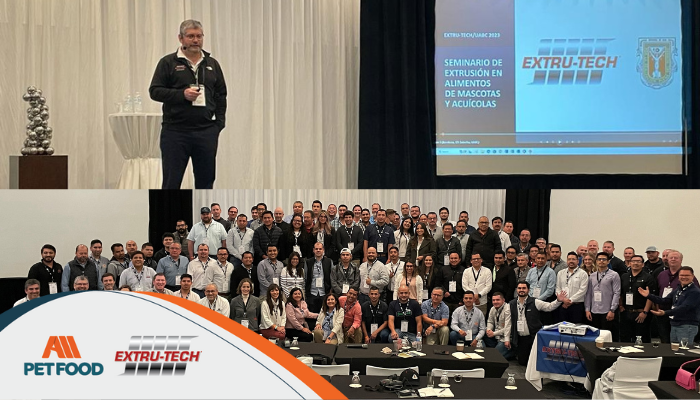 Market Information
Market Information
2+ MIN
02/05/2024
Extrusion Seminar – Extru Tech 2024: An all-inclusive experience!
This seminar is designed for pet food industry executives, decision makers and leaders, offering a unique opportunity to explore the latest technological trends and growing demands in food safety. During three intensive days, the attendants will access to the program with a detailed theoretical-practical approach, spanning from pet food to aquaculture products.
The seminar program features specialized speakers who will approach a wide range of key topics, including critical points in extrusion plants, product formulations and technology innovations.
The strategic partnership with the Autonomous University of Baja California (UABC) guarantees a comprehensive and quality approach, where participants will be able to observe practical tests with various raw materials, through live broadcasts from the UABC pilot plant.
The seminar is supported by prominent sponsors, including JEM, Armstrong, KEMIN, Source Technology, Wenger, Marel, NARA, NorthWind, Schenck Process, Tietjen and KSE, Molinos Azteca. It will be a unique meeting, balancing networking opportunities, with learning and rest, in an ideal environment for this comprehensive experience.
Close to the event date, there are only a very few places available, so those who wish to be part can complete the registration HERE and stay tuned for news on seminar social media: LinkedIn and Instagram.
We wish you an enriching and knowledge-filled experience! We hope this seminar opens the doors to new opportunities and challenges in the world of extrusion.
About Extru-Tech
Extru-Tech is a design and manufacture of high-quality extrusion systems for pet food, aqua feed and snacks industries global leader. Since 1985, the company has been dedicated to provide innovative and reliable solutions that help its customers to produce safe, high-quality food products. For more information, visit them on their minisite.
Source: All Pet Food.
 Dogs
Dogs
5+ MIN
30/04/2024
The truth about Salmonella and dog food
How worried should I be about Salmonella in dog food?
It should go without saying, the presence of any pathogenic bacteria is unwelcome and, as 'pathogenic' suggests, carries risk. However, for a healthy, happy canine, Salmonella is typically a minor issue, with the majority of dogs showing few to no symptoms.
The real concern lies in the possible transmission to humans, who are far more susceptible to the bacteria than their four-legged counterparts.
How does Salmonella affect dogs?
Salmonella is a type of bacteria that infects the gastrointestinal tract. If present in dogs, they are usually asymptomatic unless they have an already weakened immune system or are a puppy.
However, even if a dog doesn't show signs of salmonellosis — the symptomatic infection caused by Salmonella — they can still spread the disease through feces or saliva, which can infect humans. The type of Salmonella that affects dogs is more likely to affect humans as well, making it a zoonotic disease — a disease that in transmissible between animals and humans.
How do I know if my dog has Salmonella?
When the disease is seen in an adult dog, they typically have another infection or health problem at the same time. However, puppies are more likely to show symptoms of the disease whether they have an underlying condition or not.
Symptoms of salmonellosis include the following:
Severe, sudden onset, watery diarrhea
Bloody diarrhea (hematochezia)
Vomiting
Lethargy
Fever
Decreased appetite, with or without weight loss
Dehydration
Though rare, Salmonella can travel to the lungs, causing pneumonia, or to the reproductive tract of breeding female dogs, leading to loss of pregnancy.
If your dog is showing any of these symptoms, it's important to take them to the vet and follow the recommended steps to recovery.
Causes of Salmonella in dogs
The most common sources of Salmonella are contaminated food, water, or the feces or saliva of an infected animal.
'Dogs can get Salmonella infection just like humans through contaminated foods,' says Laura Ward, DFA's nutritionist.
'While a healthy dog is often resilient, certain factors can increase susceptibility. Age, poor nutrition, underlying conditions such as cancer, pre-existing diseases, stress, and even antibiotic treatments are all contributors that can affect your dog's resilience against Salmonella.'
Does raw feeding cause Salmonella?
The ingredients used in cooked and raw pet foods have an equal probability of being contaminated with Salmonella. The cooking process and HACCP should mean that Salmonella is killed in production facilities with good hygiene and safety controls. Other means of controlling Salmonella are used in raw food processing, such as HPP.
Basically, all kinds of dog food have the potential to be contaminated with Salmonella, and proper hygiene and handling should be carried out to avoid the spread to humans.
'Washing your hands and exercising good food hygiene is important no matter what kind of food your dog is fed,' says Laura.
'Dogs which lick their owners, especially around their faces can also mean that Salmonella can be easily transmissible to their humans.
'Dogs now live more closely with humans than they ever have before, meaning that the opportunities for Salmonella and other bacteria to be passed on are many.'
Salmonella is more dangerous for you than your dog
Even though your dog is the one consuming the contaminated food, people and other pets around the food can still contract the disease from exposure to contaminated food or their contaminated pets.
It's extremely important to keep small children away from dog food at all times as little ones tend to put everything in their mouth. A recent report on one particular dog food recall stated that seven people were infected with Salmonella, six of whom were children one year of age or younger.
How do dogs spread Salmonella?
Once Salmonella gets established in the pet's gastrointestinal tract, the animal can shed the bacteria when they have a bowel movement, and the contamination can continue to spread through their feces.
For this reason, it's particularly important to clean up your dog's poop in yards or parks where people or other animals may become exposed, in addition to cleaning items in the home.
If you or your child show any signs of illness such as diarrhea, vomiting, extreme lethargy, or other concerning symptoms, consult your doctor and ensure all potentially contaminated areas are cleaned.
What to do if your dog food has been recalled
If your pet food has been recalled, stop feeding it to your dog and throw it away in a secure container where other animals cannot access it. Do not donate the food or feed it to the wildlife.
It's then important to clean and disinfect all pet supplies, including all storage containers, bowls, surfaces, scoops, bedding, toys, floors, and any other surfaces that the food or dog may have had contact with.
Clean up all pet feces and thoroughly wash your hands after handling the product or cleaning up potentially contaminated items or surfaces.
Should I avoid a dog food brand that's been recalled for Salmonella?
While you must throw out all recalled food, it isn't necessary to avoid the brand going forward, especially if it is honest and open about the contamination.
It might be the case that the brand regularly and thoroughly tests for pathogens, which can be a positive sign. However, if you notice repeat cases of contamination, it may be a red flag and time for a change.
How to treat your dog with Salmonella
If you suspect your dog is infected with Salmonella, speak to your vet. They will likely ask what food your dog has consumed in recent days (it's a good idea to keep a note of their dog food at all times — maybe by photographing the packaging) and if they have been close to any infected animals.
In most dogs who develop symptoms, providing them with plenty of fluid is usually sufficient to help their immune system fight off the infection. Treatments can include:
At-home hydration
Probiotics
Intravenous fluids
Antibiotics or steroids
Blood transfusion
Overall, Salmonella in dogs isn't as scary as you may think and in the rare cases where salmonellosis occurs, it's usually treatable. The majority of the time, you won't even realize if your dog has been infected and they will be able to fight off the bacteria with their healthy immune system.
However, if your dog's food has been recalled or you think they are infected with Salmonella, it's essential to take precautions to stop any spread.
Source: Dog Food Advisor
 Ingredients
Ingredients
3+ MIN
29/04/2024
The importance of One Health for pet and human health
Humans and pets share the same environment, and this interaction will impact their health. As it is considered a member of the family, water and food containers, toys, beds, and all other items are close to the human family items. In some cases, feeding occurs side by side.
Therefore, it is crucial that we take care of the health and hygiene of animals and the environment. Humans are in contact with urine and feces when cleaning the environment, and animals often perform their physiological needs indoors.
Taking care of hair, skin, and oral hygiene is extremely important to minimize exposure to undesirable situations, such as allergens and unwanted microorganisms. Animals can be hosts to parasites, such as fleas and ticks, and effective control of these parasites is vital for the health of pets and the people who live with them.
Vaccination is an effective way to protect pets' health and helps prevent diseases that can affect humans, so it's crucial to keep your pet's vaccinations up to date.
As for pet food, a nutritionally complete and balanced diet prevents diseases, strengthens the immune system, and improves intestinal health, contributing to the prevention of zoonoses.
"I am passionate about the pet industry, and I believe that this industry was born with the concept of One Health. The pet industry can transform waste from the food industry into nutritious and safe ingredients for pets. Biorigin's yeast-derived products are the best example of this, as some come from the food industry and the sugar cane industry, which have several benefits for animal health in addition to being safe and with full traceability. Our yeasts are ingredients of natural origin and support the pet industry in developing foods that follow the trends and needs of pets, such as humanization, premiumization, and specific nutrition, in addition to being part of a sustainable chain." is what Thaila Cristina Putarov, Global Animal Nutrition and Health Business Manager at Biorigin, says.
Several scientific studies demonstrate the benefits of the human-animal bond, such as reducing stress, anxiety, and loneliness and promoting general well-being. Improved mental health is one of the significant benefits of the relationship between humans and pets.
According to a survey by The Human Animal Bond Research Institute (HABRI – 2021) with pet owners in the US, 87% said they experienced improvements in mental health after adopting a pet, and more than one in five owners have had a pet recommended for their health by a doctor or therapist.
The One Health concept encourages research and innovation in animal nutrition, seeking to develop safer, healthier, and more sustainable pet foods.
Biorigin has been offering ingredients of natural origin for 20 years to meet the demands of the pet food market, providing solutions that help improve intestinal health, pet immunity, and the attractiveness of food. As with our products, MacroGard, scientific and commercial reference, is the source of beta-1,3/1,6-glucans most studied and used in animal feed to maintain health and well-being. It has proven to be an effective tool for skin and hair health, bone health, weight control, and pet immunity. The prebiotics ActiveMOS and HyperGen are rich in mannan oligosaccharides (MOS) that function as substrates for the microbiota and are essential for maintaining intestinal health and local immunity.
Additionally, Biorigin's yeast extracts can also make food tastier for pets. To learn more, read our article on palatability and discover the PalaUp line.
Source: Biorigin.
 Veterinary
Veterinary
6+ MIN
26/04/2024
How to treat (and supplement) pets like part of the family
These savvy consumers increasingly seek high-quality products to support the holistic well-being of their pets.
Common areas of focus include mobility and joints, dental and oral wellness, healthy ageing and general well-being.
As an indicator of this mounting opportunity, functional treats for dogs and cats in the United Kingdom each have a forecasted CAGR of more than 12% through 2026.1
Pet supplements are also predicted to show steady growth, with the UK's overall pet health and supplement market estimated to grow by a CAGR of 8.6% through 2026.1
The introduction of functional treats has boosted consumer interest in the pet supplements segment. Soft chews are outpacing other pet supplement formats in terms of growth as functional treats deliver a guilt-free reward with the added advantage of wellness benefits — much like gummy supplements for humans.
Flavour is key to capturing pet satisfaction: taste profiles often centre around chicken, fish and other meats, as well as fruits and vegetables. For people and their pets, fun and functional wellness products are dynamic drivers of potential.
Where human and pet nutrition converge
Functional ingredients that are highly popular among humans can be just as useful for their furry companions. This commonality facilitates the development of a coherent product offering for the entire family, such as microbiome solutions.
Consumers worldwide are gaining awareness that the gut microbiome helps to maintain overall well-being for themselves and their pets. Prebiotics, probiotics and postbiotics can all support a healthy gastrointestinal environment, as well as the skin and oral microbiomes.
However, consumer understanding of biotics and which products are effective is still relatively nascent. Plus, the less information a consumer has about biotics, the less likely they are to purchase them.
Remarkably, of surveyed Europeans, Polish consumers are the most knowledgeable about the gut microbiome and biotics related to cats and dogs … and 81% have purchased biotics for their pets at least once.2
Most people who purchase biotics do so because they've received a professional recommendation and want to help their pet manage a specific condition. Approximately one in three European pet owners have purchased biotics at least once a year because of a recommendation.2
In many cases, they use biotics to support their pet's digestive or gastrointestinal concerns. There is a clear opportunity for brands to help inform more consumers about the advantages of biotics in pet products.
Expanding awareness through marketing and packaging, as well as veterinary advocacy, can help to increase the adoption of these wellness products.
A window of opportunity
Positive endorsements from a trusted source go a long way in terms of informing consumer purchasing decisions. European pet owners primarily rely on veterinarians, pet stores and websites about pets to research new foods, treats and/or supplements for their dogs and cats.2
On top of that, 95% of functional treat purchases are highly influenced by the product's attribute and primary health benefit claim.1
Consumers perceive claims such as clinically tested, scientifically studied and vet recommended as evidence of a product's effectiveness.3 And nine out of 10 European consumers say a veterinarian is their number one trusted source of information about new pet products.2
Scientifically robust benefit claims are also necessary to convince trusted key audiences such as veterinarians, pharmacists and specialist retailers that new wellness products dedicated to dogs and cats do what they say.
Furthermore, compliance with European regulations is critical for successful product launches. Brands can get a running start with a white label manufacturer that offers innovative, turnkey formulations that are designed to address pet parent demands.
Consumer insights show that soft chews are the clear leader as the preferred treat format in Europe, followed by sticks and biscuits.2
Toppers and mix-ins are also gaining interest. These formats currently have greater availability in the marketplace because they are easy to use and convenient for pet owners.
But unique formats can also unleash opportunities; 27% of German pet owners say they would buy functional treats as a squeezable paste.2 No matter what the format is, functional products must preserve active ingredients throughout their shelf-life.
Overcoming functionality challenges
Soft chews are typically manufactured with classic extrusion equipment, although this high-heat process might negatively affect colours, flavours and functional ingredients.
Unlike others in the industry, ADM creates turnkey and tailor-made soft chews with a cold extrusion process that omits the use of heat, water or gumming agents. This preserves the texture, flavour and benefits of all the ingredients and enables suppliers to bring a superior soft chew to market.
The quality and type of functional ingredients can also help to ensure they remain active during transit and storage. For example, extreme heat from extrusion and baking can diminish the efficacy of live probiotics.
Postbiotics, which are a preparation of inanimate micro-organisms and/or their components, can confer a health benefit on the host despite challenging processing conditions.4
Thus, postbiotics may be a useful alternative to probiotics in certain wellness product applications.
Pioneering research in pet nutrition
As the field of microbiome solutions continues to mature, research regarding the use of biotics and their effects on canine health is just beginning to emerge.
Sophie Nixon, PhD, Head of Clinical Research for Pet and Animal Well-Being at ADM, has overseen an exploratory, first-in-species study with adult dogs to evaluate the effects of daily supplementation of Bifidobacterium animalis subsp. lactis CECT8145 (BPL1) in both live probiotic and heat-treated postbiotic forms.5
Data indicates that both the probiotic and postbiotic versions of BPL1 can safely be supplemented in healthy adult dogs, with changes observed in faecal short-chain fatty acids, bacterial composition and faecal metagenome (compared with controls).
A further clinical study is ongoing to assess additional physiological outcomes. Additionally, inactivated Bifidobacterium longum CECT7347 (ES1) may support gut barrier function according to in vitro data.6,7
In addition, the efficacy of the live probiotic Bacillus velezensis DSM 15544 as a zootechnical additive (a gut flora stabiliser) was confirmed by the European Food Safety Authority (EFSA).8
Pioneering science such as these trials will spur the development of pet products that feature highly sought-after wellness claims and comply with European regulations, providing consumers with trusted options to support the wellness journey of their pets.9
Evidence suggests that demand for functional pet products and supplements is growing in the European market.
Half of European pet owners report purchasing functional treats at least every 2 months and approximately six in 10 consumers say they would be interested in buying some type of functional treat for their dog(s) and/or cat(s) in the future (58% of pet owners living in Germany, 60% in France and 63% in the UK and 69% in Poland).2
Microbiome solutions present an intriguing opportunity for brands to deliver on evolving pet owner demands and take advantage of an emerging product category with extensive development potential.
By leveraging ADM's large portfolio of ingredients, formulation expertise, end-to-end support and ongoing clinical research, pet brands will have what it takes to gain credibility and differentiate themselves in the marketplace.
References
www.euromonitor.com/pet-care-in-the-united-kingdom/report.
Archer-Daniels-Midland Company (Chicago, IL, US), ADM Outside Voice, proprietary research conducted via Morning Consult (2023).
https://store.mintel.com/report/americas-pet-owners-market-report-2021.
https://isappscience.org/behind-the-publication-understanding-isapps-new-scientific-consensus-definition-of-postbiotics/.
Manuscript undergoing peer review: BPL1® is a trademark registered for Biopolis SL in the EU and other countries.
P. Martorell, et al., 'Heat-Treated Bifidobacterium longum CECT-7347: A Whole-Cell Postbiotic with Antioxidant, Anti-Inflammatory, and Gut-Barrier Protection Properties,' Antioxidants 10, 536 (2021).
ES1 (Bifidobacterium longum subsp. longum CECT7347) is used by ADM Biopolis under license from CSIC.
In the UK, this strain is named Bacillus subtilis C-3102 (DSM 15544) and, in the EU, it's named Bacillus velezensis DSM 15544.
Local regulations must be reviewed to confirm the permissibility of ingredients for each category.
Source: Nutraceutical.
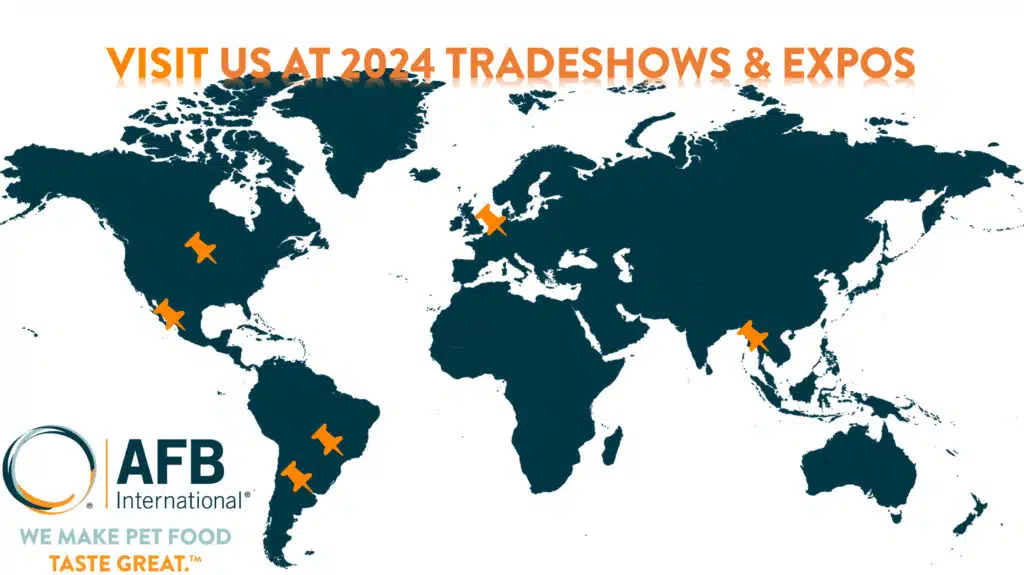 Market Information
Market Information
3+ MIN
25/04/2024
AFB is traveling all over the globe in 2024!
We are excited to announce that we will be participating in six different tradeshows and expos across the globe this year! These events are crucial for us as they enable us to connect with our customers, vendors, and other important industry contacts. Moreover, these customer-facing pet food industry events help us to showcase our latest research, global resources, and palatability products and solutions. We would love to meet you at one of these events!
Petfood Forum April 29 – May 1 in Kansas City, Missouri USA
In just 13 days, the AFB Team is traveling to Kansas City! Make sure to stop by our booth 1300, to learn how our experts, services, and products can meet your specific needs with our consultative approach.
While you are at the show, stop by the poster presentations in the Future of Pet Food Pavilion, and check out AFB's poster entitled 'Kibble Size and Its Impact on Feline Palatability' by Greg Hibbard, Senior Scientist, AFB Product Development. Greg will be there to talk about the palatability study findings – it might surprise you. Be on the lookout for the future whitepaper on Palatants+.
Interzoo May 7 – 10 in Nuremberg, Germany
The next stop will be in Nuremberg for Interzoo, which is the world's leading tradeshow for the international pet industry! Every two years, Interzoo attracts thousands from all around the world, to see a diverse range of products for pets. And we will be there in Hall 6, booth 321. Stop by to meet our Global Sales, Marketing, and R&D Teams.
A special presentation will be given at our booth – an Eat & Learn experience to connect the sensory relationships we have with certain flavors, and how they relate to our pet's enjoyment of their foods, supplements, and treats. Check out the details here.
Fenagra June 5 – 6 in São Paulo, Brazil
Then the AFB Team is off to São Paulo for one of the largest events for the Latin American pet food market – Fenagra! The event has moved from Campinas to a much larger facility for 2024. Our commercial team wants to meet with you to learn about your unique pet food needs and how palatants play a part in your products. Visit us at Booth E30, or set-up a meeting by emailing [email protected].
Foro Mascotas June 26 – 28 in Guadalajara, Mexico
The global tour continues to Mexico at the Expo Guadalajara for Foro Mascotas. Our booth G2 will be staffed with AFB's Global Marketing and Sales, so stop by to discuss your pet food product needs.
'We have been participating at Foro Mascotas for 10 years. It's a great opportunity to talk face-to-face with our customers to learn about their needs and reach out to potential customers to expand our presence in México. Over the years, Foro Mascotas has grown to 80 booths and 1,350 attendees from 15 countries.' – Ana Mendes and Jeanette Cano, AFB Mexico.
CIPAL (Congress of the Pet Food Industry in Latin America) September 25 – 26 in Puerto Madero, Argentina
Staying in Latin America, we meet again for CIPAL! This show is held every other year and is a great place for learn about new trends and technologies from the pet food industry in Latin America. Look for us at booth G1 to learn how AFB uses scientific approaches and advanced technologies to help customers maximize pet food performance.
Pet Fair South East Asia October 30 – November 1 in Bangkok, Thailand
Now we travel to the other side of the globe to exhibit for the first time at Pet Fair South East Asia! We are very excited to be a part of this event, as we have expanded our global reach into this region. Our first production facility and regional headquarters in the Asia Pacific region will be in Samut Prakan, Thailand. We are targeting to start commercial production in summer 2024. Remember to find AFB at the show to find out more information on how our new Thailand facility can help you improve the palatability of your pet food products. Or don't wait until October – contact Bas Melssen at [email protected] today.
Source: AFB
 Market Information
Market Information
4+ MIN
23/04/2024
Interzoo 2024: History in the making
What does Interzoo represent for the global pet care market?
Interzoo is the world´s leading trade fair for pet supplies. It serves as compass and lighthouse for the worldwide pet care sector. As a meeting place and source of inspiration for the pet industry, Interzoo is showcasing and addressing the developments and trends of tomorrow. The high internationality among both, visitors and exhibitors, facilitates companies to build and develop their international supply chains and global networks. This way, Interzoo serves as the flagship event for the international pet supplies industry.
How has Interzoo developed from the first edition until today?
Interzoo's success story began in 1950 at the annual association meeting of the Zentralverband Zoologischer Fachbetriebe Deutschlands e.V. (ZZF, German Pet Trade and Industry Association). Until 1959, the so-called "Zoo Fair" was a purely national event, but it was so well received that the exhibition opened-up for companies from abroad by 1959. In the following years, the trade fair expanded more and more – starting from 15 exhibitors and 100 trade visitors in 1953 to more than two hundred exhibitors in the 1970s. In 1968 the trade fair was finally named 'Interzoo'. In response to the immensely increased demand for exhibition space, Interzoo moved to Nuremberg in 1988 and is organized in partnership with NürnbergMesse. Since then, exhibitor and visitor numbers reached new dimensions, culminating in an exhibitor record of more than 2,100 exhibitors for Interzoo 2024.
What are the most striking facts and figures in terms of exhibitors, countries represented and expected visitors?
- Over 2,100 companies from 69 countries will showcase their products and solutions in 14 exhibition halls that cover a display area of more than 140,000 square metres. The strong international presence at Interzoo with about 86% of the exhibitors being from abroad, ensures an unrivalled overview of the global market.
A very notable increase in registrations for stand space can be registered from countries such as Italy (+31%), Poland (+27%) and Turkey (+26%). Among the exhibiting countries with the largest exhibition size are Germany, China, Italy, the Netherlands, Turkey and the USA. On the visitor side, we are aiming for 40,000 trade visitors – this would be another record.
Petfood continues to be a strong product segment at Interzoo. The segment of petfood technology in particular sees a steady increase to now about 200 exhibitors. Compared to Interzoo 2022 this means the number of petfood technology exhibitors has increased by 46 percent and compared to 2018 the number has even doubled!
What are the most important events of the supporting programme for petfood professionals?
- This year´s Interzoo supporting programme offers a rich portfolio of sessions, special shows and demonstrations. Starting with Petfood Forum Europe on Monday, 6 May 2024, we will kick-off a week covering key topics of the global pet supplies industry. Petfood Forum Europe one day prior to Interzoo provides an additional forum for the important topic of pet food ingredients, packaging and processing technologies. It is therefore the perfect prelude to an exceptional Interzoo 2024 where the petfood segment again plays a crucial role.
During 7-10 May, we will organize six Interzoo Academy Sessions: The Interzoo Sustainability Session with results from the new Interzoo Sustainability Study, one session on social media marketing within the pet industry and four sessions on different geographic markets: Europe, Brazil, South-East Asia and the USA.
On top of that, the Fresh Ideas Area in Hall 3 will be a further highlight of the trade fair. Here, start-ups and innovative companies present their business ideas int the segments petfood, accessories, technology and sustainability. More product highlights can be seen in the Product Showcase, located at Entrance Mitte, offering an initial overview on the diverse product world for pets. And finally, the Interzoo Party on Thursday, 9 May, will be a prime opportunity for networking within a unique Bavarian atmosphere.
What will be the most important innovations and trends in the pet supply industry?
- We see several trends within the pet industry such as sustainability or new pet-tech to improve the health of pets. We worked together with the exhibitors to reflect those trends in the programme of the Fresh Ideas Stage. For sure, the Fresh Ideas Contest on Friday, 10 May, will show some of these ideas.
Since the previous success of special formats such as the Product Showcase and the innovative idea presentation platform, the Fresh Ideas Stage, what will be new this year?
- Interzoo 2024 builds on those successful formats and expands them. This year, hall 3 will be the centre of the start-up activities: More than 70 start-ups will showcase their innovative solutions for the pet industry on an area of more than 700 square metres. Also, we have enlarged the Fresh Ideas Area and added a networking area, making it a centrepiece and a highlight of Interzoo 2024. In addition to the more than 30 speaker slots on the stage, the networking lounge will be home to Meet & Greet formats, for instance with petfluencers.
The Interzoo App has new, additional functions. It is thus an indispensable tool before, during and after the trade fair and offers a ticket wallet, a trade fair planner, in-depth hall plans and a networking feature.
Source: Interzoo.
 Trends
Trends
2+ MIN
22/04/2024
We enable the green transition
When speaking of our environment, climate crisis, environmental pollution and resource scarcity are three of the most pressing challenges of our time. And time is the crucial factor here: the world needs to change – now. We all need to change.
In order to create a better future for our children and grandchildren, we must build a new economy. A greener one. We at ANDRITZ are doing everything to drive this change: We enable our customers to make the world a greener place with our sustainable solutions.
To do this, they can choose from a wide range of technologies in all kinds of fields from decarbonization to recycling and waste-to-value systems on through to pollution control – and we are constantly working on further innovations to tackle more and more of today's and tomorrow's challenges.
At the same time, we are, of course, also striving to reduce our own carbon footprint: We plan to reduce our greenhouse gas emissions (Scope 1 and 2) by 50% compared to 2019 by the end of 2025. Hence, we implement measures to improve energy efficiency and increase the share of renewable energy sources at our production sites.
Apart from that, we are continuously minimizing the environmental impact of our locations regarding water consumption and waste production – here too, the plan is a 5% reduction compared to the previous year.
But all this is not a new phenomenon, it is not a trend for us. We have been engaging in innovative technologies for more than 170 years now. With our passion and our spirit we are improving things, step by step, day by day: we have always been engineering for the change.
All our efforts have one common goal: a better future.
We need to address the following three pivotal points to ensure that this change is successful: decarbonizing industries and mobility to mitigate climate change, transforming the economy into a true circular economy to use resources responsibly, and protecting our environment. We must strive to keep the environment as free from pollution as possible, safeguarding our air, water and soil to preserve biodiversity and ensure a healthy ecosystem for future generations.
Source: Andritz.
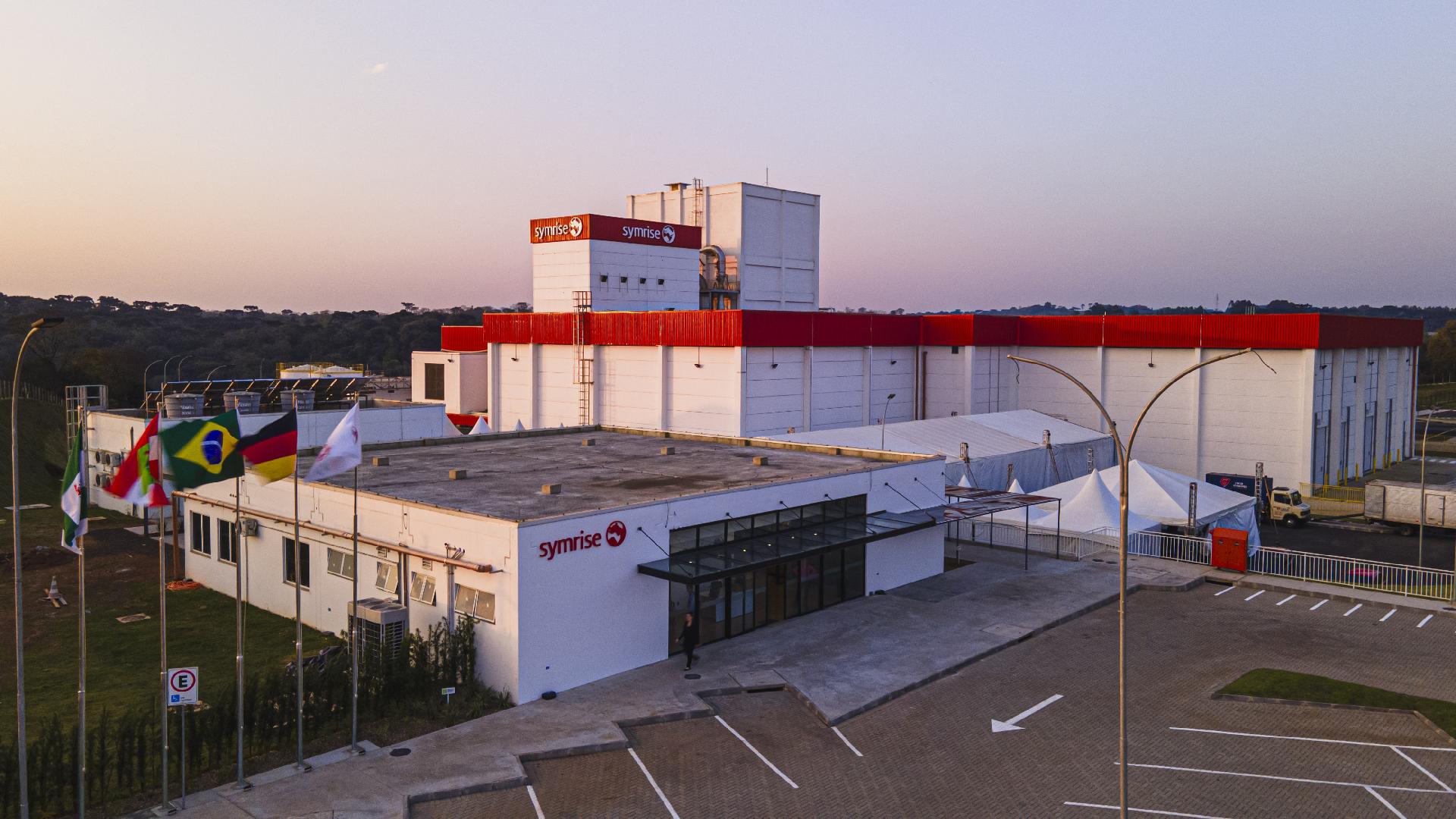 Market Information
Market Information
2+ MIN
19/04/2024
Symrise Pet Food's palatant plant located in Chapecó – SC obtained the FSSC 22000 Certification
We are pleased to announce that our newest and largest production facility for liquid and powder palatants located in Chapecó-SC, Brazil, has achieved FSSC 22000 certification. This certification is a testament to our commitment to quality, food safety and excellence in pet food production.
FSSC 22000 certification is an international recognition granted by the Global Food Safety Initiative (GFSI) that validates the implementation of a robust and effective Food Safety Management System (FSMS). This standard is based on the principles of Hazard Analysis and Critical Control Points (HACCP) and complies with the highest international standards.
Why is this certification important?
For Symrise Pet Food and the pet food industry, achieving FSSC 22000 certification represents a critical step in the commitment to excellence:
Customer Trust: Demonstrates to our customers our unwavering commitment to product safety and quality, giving them peace of mind that they are receiving reliable ingredients.
Continuous improvement: we implement a management system that allows us to identify and control potential risks, ensuring the safety of our products at every stage of production.
Strengthening the supply chain: we reinforce the trust and reputation of our company within the supply chain of the pet food industry.
Compliance with international standards: allows us to comply with the most demanding legal and regulatory requirements globally.
Pet Food It is proud of this achievement and continues to work to maintain its position as a strategic partner of pet food manufacturers. FSSC 22000 certification is a clear testament to our commitment to food safety and customer satisfaction.
Symrise Pet Food is a global leader in high-value, sustainable solutions that improve pet well-being and guardian satisfaction. The company offers multiple products and services that improve palatability, pet nutrition, and pet food protection. Symrise Pet Food is present on 5 continents with 1,750 employees, 32 sites and 4 expert measurement centers with 1,100 dogs and cats.
Source: Symrise AG.
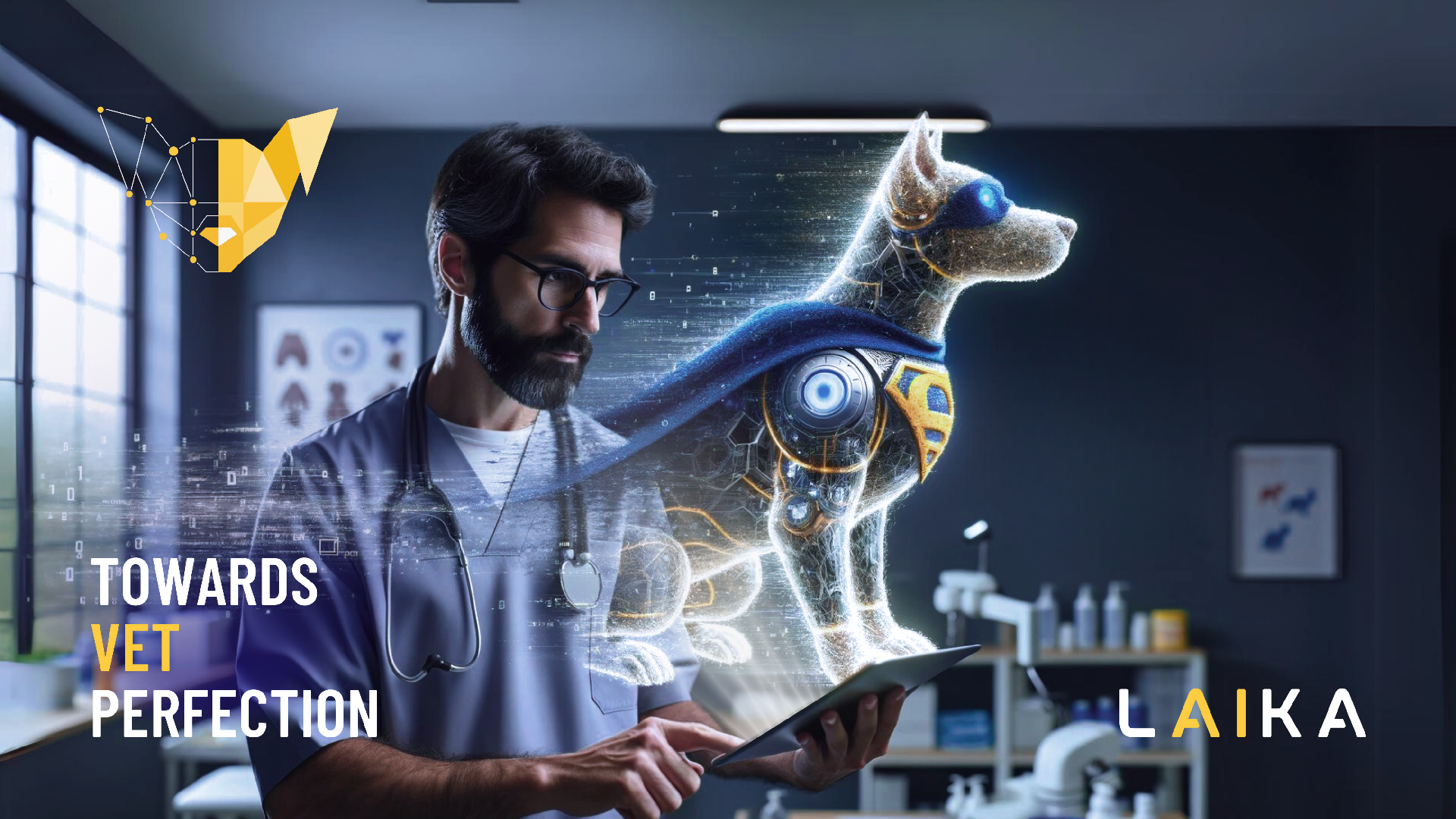 Veterinary
Veterinary
1+ MIN
19/04/2024
LAIKA, a vet-to-vet solution for the veterinary community
Built with veterinarians for veterinarians, the project is guided by a belief in the power of AI to augment and enhance human capabilities, aiming to offer veterinarians a reliable partner in their mission to care for pets.
It incorporates a sophisticated two-layer AI system, with the initial layer focusing on data-driven diagnoses and the second layer providing direct interaction capabilities. This blend of technology is designed to support veterinarians in making more accurate and efficient diagnoses.
So far, LAIKA has been embraced by 104 clinics in our pilot phase (far surpassing the original target of engaging 25 clinics), underscoring the demand for such an innovative tool. Veterinarians appreciate LAIKA as their right-hand assistant—a general support for diagnoses, disease information, dosage queries, and more. It's becoming clear that LAIKA is on its way to becoming the veterinarian's best friend, enabling them to perform at 100% efficiency and beyond.
LAIKA promises to redefine pet healthcare, making advanced diagnostics and care accessible to all. Future plans include expansion across Italy, France, and other EU countries shortly.
For more information, visit: https://laika.aitemsolutions.com/#/home
Source: All Pet Food.
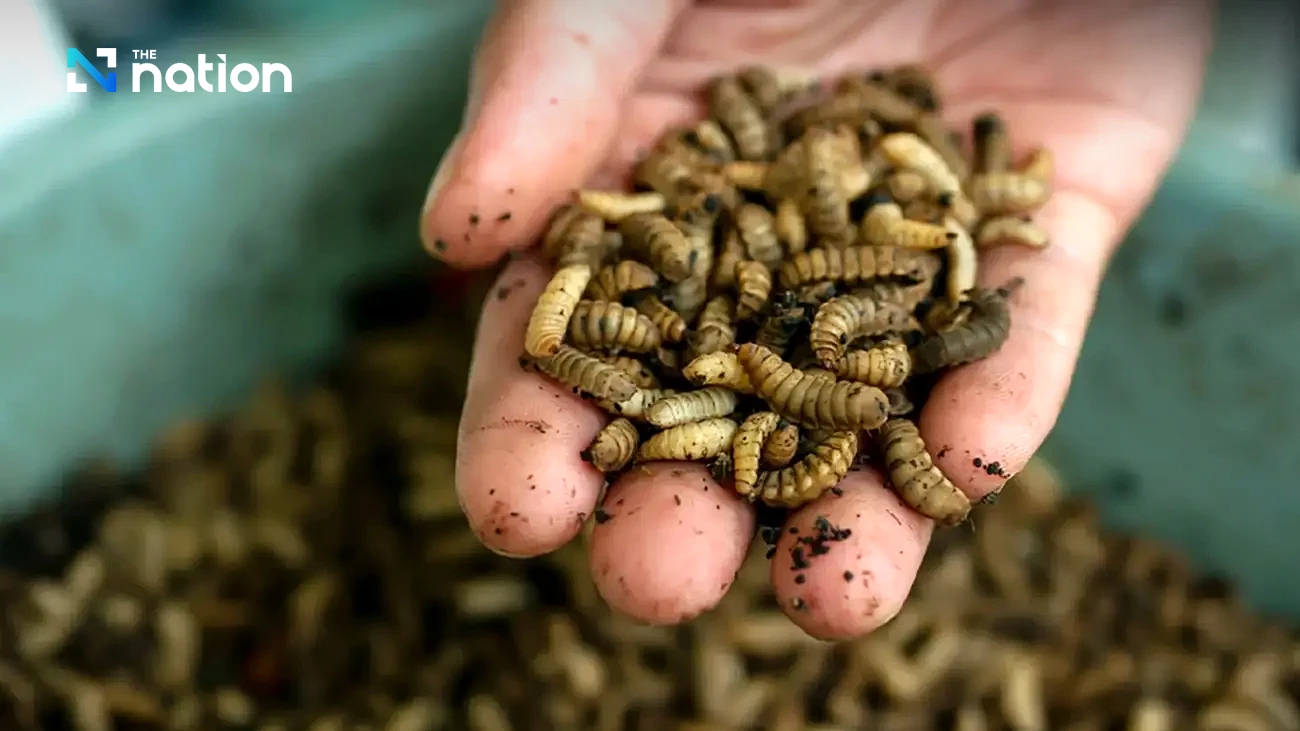 Trends
Trends
2+ MIN
18/04/2024
Common black fly larvae added to list of alternative protein source in animal feed
The black soldier fly is a common, widespread fly of the Stratiomyidae family.
After a meeting with the Agriculture and Cooperatives Ministry's Agricultural Product Standards Committee on Thursday, Deputy Agriculture Minister Anucha Nakasai said the committee had approved six new or updated items in agriculture standards. The items include BSF larvae for animal feed, updated durian farming methods, good hygiene practices (GHP) for egg collection centres, good agricultural practices (GAP) for growing orchids, GAP for sesame farming, and guidelines for analysing risks of food-based antimicrobial resistance drugs.
Anucha said these standards are crucial for elevating the quality of Thai agricultural products and bringing food up to international standards, ensuring safety and building consumer confidence both domestically and internationally, as well as promoting Thailand to become the world's kitchen.
Better agricultural standards will also help farmers sell their products with a bigger profit margin, thus enhancing their living standards, he said.
Anucha added that one of the key topics at the meeting was the standard for BSF larvae as animal feed. The committee acknowledged that BSF or black soldier fly larvae could serve as a good source of protein that is easy to raise, has low breeding costs and few natural enemies.
After hatching, the larvae grow fast, consuming a variety of organic materials and only producing organic, decomposable waste that makes the raising process sustainable and environmentally friendly. BSF larvae are also high in nutritional value, making them suitable as a key ingredient in feed for fish, chicken and pig farming.
The meeting on Thursday also upgraded the regulations for mushroom manufacturing, in place since 2016, to standards that will ensure the production of quality mushrooms. Currently, there are more than 60 companies registered for large-scale mushroom farming.
Source: The Nation.
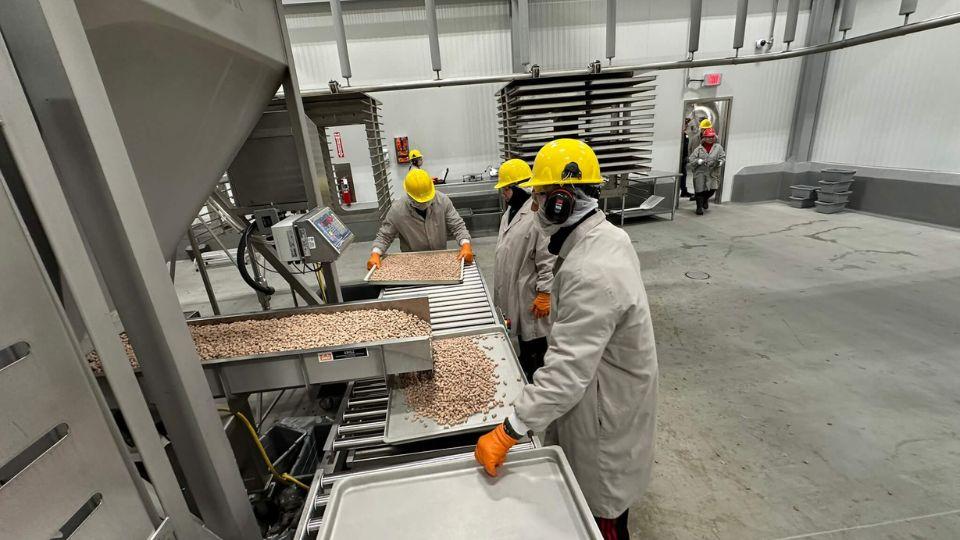 Market Information
Market Information
3+ MIN
17/04/2024
Industry round-up: latest efforts by pet food players to fuel production capabilities
Petsource
Petsource, a Scoular subsidiary that manufactures pet food, has invested $75 million (€69M) in tripling its production capabilities. Scoular partners with pet food manufacturers to aid the industry's strategy growth, and this investment aims to help its growing customer base and provide space for new customers seeking production.
The invested amount has added 70,000 square feet of manufacturing space for freeze-fried pet food ingredients and created 75 new jobs.
Petsource President Amy Patterson comments, 'Strong demand, growth in our customers' businesses, and our desire to continue to provide them high quality, innovative solutions drove the project.'
Purina's expansion in North Carolina and Iowa
As part of a $450 million (€413M) project—one of its largest investments yet—Purina expanded its footprint in North Carolina by opening its new factory in Eden on March 26. The new facility will serve consumer demand in the eastern and southeastern United States. It was built by repurposing 80% of a former brewery to create a 'world-class pet food facility.'
The company's production process will also see an overall boost with the installation of the first-ever vertical dryer installed in a Purina U.S. facility, automated warehousing systems and a one-of-a-kind Manufacturing Experience Center designed to introduce modern manufacturing.
A company spokesperson tells GlobalPETS, 'Our growth strategy includes expanding and enhancing operations at our existing facilities, and we're actively pursuing a project to increase capacity at our factory in Fort Dodge.'
This 80,000-square-foot facility in Fort Dodge, Iowa, was given the green light after Purina received approval from the Iowa Economic Development Authority (IEDA) Board.
Through a $175 million (€161.3M) capital investment, Purina will add a new product line and create 50 jobs through this 'capacity-building project.' The IEDA Board has also approved Purina tax benefits through the High-Quality Jobs (HQJ) program.
Purina in Hungary
Nestlé Hungária is pumping HUF 55 billion ($151M/€139.7M) into its 2020-established Purina facility in Bük, striving for its total annual capacity to reach 500,000 tons by 2025.
The latest investment will add a new unit and create 130 jobs. By utilizing local raw materials, it will enhance regional competitiveness and market security for domestic farmers.
'The Hungarian Government is contributing to this investment by providing the infrastructure necessary for operation by modernizing and developing the road and water network, which will also benefit the inhabitants of the region,' comments Péter Szijjártó, Minister of Foreign Affairs and Trade.
General Mills
The American multinational will construct a 729,120-square-foot facility for its Blue Buffalo pet food division in Kansas at Olathe's I-35 Logistics Park to facilitate storage and distribution capabilities.
General Mills confirms to GlobalPETS that it expects to commence the construction of the 57-acre site by next month. The Johnson County project is also expected to create 81 new jobs.
To supplement growth, the site developer, Scannell Properties, is requesting the city to issue $71 million (€65.4M) in industrial revenue bonds and a 10-year, 50% property tax abatement.
Kemin Nutrisurance
Brazil-based global ingredient manufacturer Kemin Industries has opened a new spray-drying facility in its Vargeão, Santa Catarina, headquarters. Along with a new Innovation Centre, which is set up to provide customer production and supply solutions, Kemin has become the largest pet food manufacturing plant in Latin America by volume capacity for producing dry and liquid palatants.
The two-fold expansion is expected to support the company's South America, Asia and Europe markets.
Source: GlobalPETS
 Trends
Trends
7+ MIN
16/04/2024
Domestic Dining
Premium cat foods that are made in the USA continue to fare well on the market, with transparency and ingredient tracking an important selling point.
"Many consumers have become interested in providing better nutrition for all of their pets, not just their dogs," said Janet Scott, owner of Rawz Natural Pet Food, a manufacturer in York, Maine.
For manufacturers, made in the USA is a point of pride and indicator of quality.
"Consumers desire made-in-the-USA products overseas and at home in the U.S.," said Holly Sher, president and owner of Markham, Ill.-based Evanger's Dog and Cat Food Company. "The made-in-the-USA flag is correlated with quality and peace of mind."
Retailers say most consumers are not aware of the difference between made in the USA and sourced in the USA.
"And boy are they surprised when we tell them all about it," said Pattie Zeller, pack leader at Animal Connection All Natural Store for Pets in Charlottesville, Va. "We spend a lot of one-on-one time with customers and do nutritional consulting. We talk about sourcing and why it makes a difference, too."
Animal Connection is big on transparency. For example, Zeller is particularly fond of Open Farm's commitment to transparency, including QR codes on packaging that show ingredient sourcing.
Tabitha McKinney, senior category manager for dog and cat food at Feeders Supply Company in Louisville, Ky., agreed that made in the USA and sourced in the USA are one and the same in many customers' minds. In the past, these phrases would also be associated with a higher price tag, she said.
"In some cases, this is true," McKinney said. "However, in most cases, made in the USA items are comparable in price to items made elsewhere, at least in the food arena."
Making food in the USA: Benefits & challenges
For cat food manufacturers, there can be pros and cons to sourcing ingredients in the U.S.
Some benefits include:
Maintaining supplier relationships. "[Rawz has] been able to work with the same manufacturers since we started our business in 2015," Scott said. "We have wonderful relationships and a great deal of trust in them, which certainly makes the process of making our foods in the U.S. worth it."
Speed and logistics. "Making our food in the U.S. reduces lead times and logistical hurdles and helps us differentiate ourselves from the competition," said Grant A. Berry, director of sales for Bixbi, a manufacturer in Boulder, Colo.
High quality standards. Because the U.S. has strict regulations and standards for pet food, manufacturers can be assured that their products are meeting specific safety and nutritional requirements, Scott said.
Environmental impact. "Not only does sourcing locally allow [Evanger's] to control the supply chain tightly, often picking up our raw materials in our fleet of trucks, but it also helps reduce our carbon footprint as a company," Sher said.
On the other hand, for manufacturers, some cons to sourcing ingredients in the U.S. can include:
Higher costs. "Some ingredients cost more in the U.S. than outside the U.S.," Scott said. "Additionally, labor costs tend to be higher than in other countries, which can impact the overall cost of production."
Ingredient availability. Some ingredients are not readily available in the U.S. to meet manufacturer needs or specifications, Scott said. Ingredient availability can also vary by season, Berry noted. While Bixbi focuses on sourcing most ingredients in the U.S., the company sometimes sources globally to ensure consistency.
At press time, Rawz planned to release a new Limited Rabbit Recipe for Cats at Global Pet Expo in Orlando, Fla., in March. The grain-free kibble features a freeze-dried raw rabbit coating on every bit and is free from eggs, potato, corn, rendered fat, dairy, wheat, soy and canola oil, Scott said.
"Sourcing within the U.S. is something that's very important to us, and we try to source domestically whenever possible," Scott said. "However, we have very high specifications for some of our ingredients, including high protein, and therefore we must source certain ingredients outside the U.S. to meet these specifications."
Rabbit is one protein that Rawz has found to be difficult to source in the U.S., but the company has trustworthy suppliers in France and Italy, Scott noted.
"It's important to us that we're transparent with our customers, which is why shoppers can see a complete list of sources for every single ingredient we use when they visit our website," Scott added.
Today's shoppers seem to be understanding of the fact that some ingredients are sourced or processed in other countries, McKinney said.
On the other hand, Evanger's chooses not to source ingredients outside the U.S.
"Using 100 percent USA-sourced ingredients is everything to our company and is always our priority," Sher said. "We source most of our meat and farm fresh fruits and veggies within 50 miles of our Markham, Ill., plant to ensure freshness of our premium dog, cat and ferret foods."
One of Evanger's latest additions is EVx cat foods, a restricted diet line with solution-focused formulas including Bland Diet, Urinary Tract, Weight Management, Low Phosphorus and Senior & Joint Health.
"It was and continues to be very well-received by our retailers and customers, with more and more pet parents looking to their neighborhood indie pet retailer owner to help guide them on health decisions as well as solve problems with the most common health challenges," Sher said.
Manufacturers of U.S.-made premium cat food say they hold themselves and their suppliers to high standards.
Bixbi puts its focus on high-quality ingredients, transparent testing, and meeting and exceeding standards set by the Association of American Feed Control Officials (AAFCO), Berry said. The company prioritizes sustainable sourcing, such as cage-free chicken and wild-caught tuna.
Its dry and freeze-dried foods are made at a family-owned facility and put through rigorous testing. Raw ingredients are tested based on their type and origin. Foods are batch tested for contaminants like salmonella, listeria, E. coli, yeast and mold—and also for nutritional content including protein, fat, moisture, fiber, minerals and amino acid levels. Products also undergo routine testing for heavy metals and environmental toxins.
"We want your pet to get the most out of every bioavailable ingredient we craft our food with," Berry said. "Therefore, our recipes are thoroughly tested for maximum nutrient absorption and industry-leading digestibility results."
Along with quality and transparency, Rawz places an emphasis on creating high-meat, minimally processed diets that are similar to feeding raw.
"While we believe that the best way to feed an animal is with a raw diet, we understand that not everyone feels that same way, nor can everyone afford to feed raw," Scott said.
When evaluating suppliers, the company researches and looks for options with a good reputation and transparent processes. "We've been using most of the same suppliers for the almost 10 years that Rawz has been in business, and we have a great deal of faith in them to deliver the best products for our customers," Scott said.
Trustworthy partners
Just as trust between suppliers and manufacturers is important, so is trust between retailers and manufacturers.
"We spend a lot of time evaluating brands and ask 'the hard questions' because our customers expect us to know the product inside and out," Zeller said.
When deciding which products to carry, Zeller looks for quality ingredients, human-grade and humanely raised or wild-caught proteins, independent third-party testing results and nutritional profiles. For dry diets, she only considers products made in the U.S. or Canada. She also considers sales support, loyalty programs and store event support.
"[For example,] Petcurean's commitment to quality ingredients is impressive," Zeller said. "Our sales rep, Charles Eiler, is great about engaging with customers when he's visiting the store."
In addition to quality standards and testing, McKinney looks for brands that differentiate themselves in some way, such as incorporating something unique or offering solutions-focused diets.
One major way that Rawz differentiates itself from other pet food manufacturers is its commitment to philanthropy.
"We're a family-run business that has been in the pet food industry for 64 years," Scott said. "We started with Old Mother Hubbard, and then Wellness and have now created Rawz, so we certainly have a lot of experience when it comes to product development."
One hundred percent of the company's profits are donated to the Rawz Fund, which supports organizations that help those living with brain or spinal cord injuries get the services—and service dogs—they need.
The founders of the company and the fund, Janet and Jim Scott, found the inspiration for their cause close to home. Both of their sons suffered life-altering injuries from unexpected accidents. During their recoveries, the Scotts were inspired by the profound connection both sons developed with the family's yellow Lab.
"Our focus continues to revolve around the recovery and success of our children, as it would for any parent," the couple writes on Rawz's website. "We wanted to share this ability with all individuals and families who are affected by injury and/or disability."
Source: Pet Product News
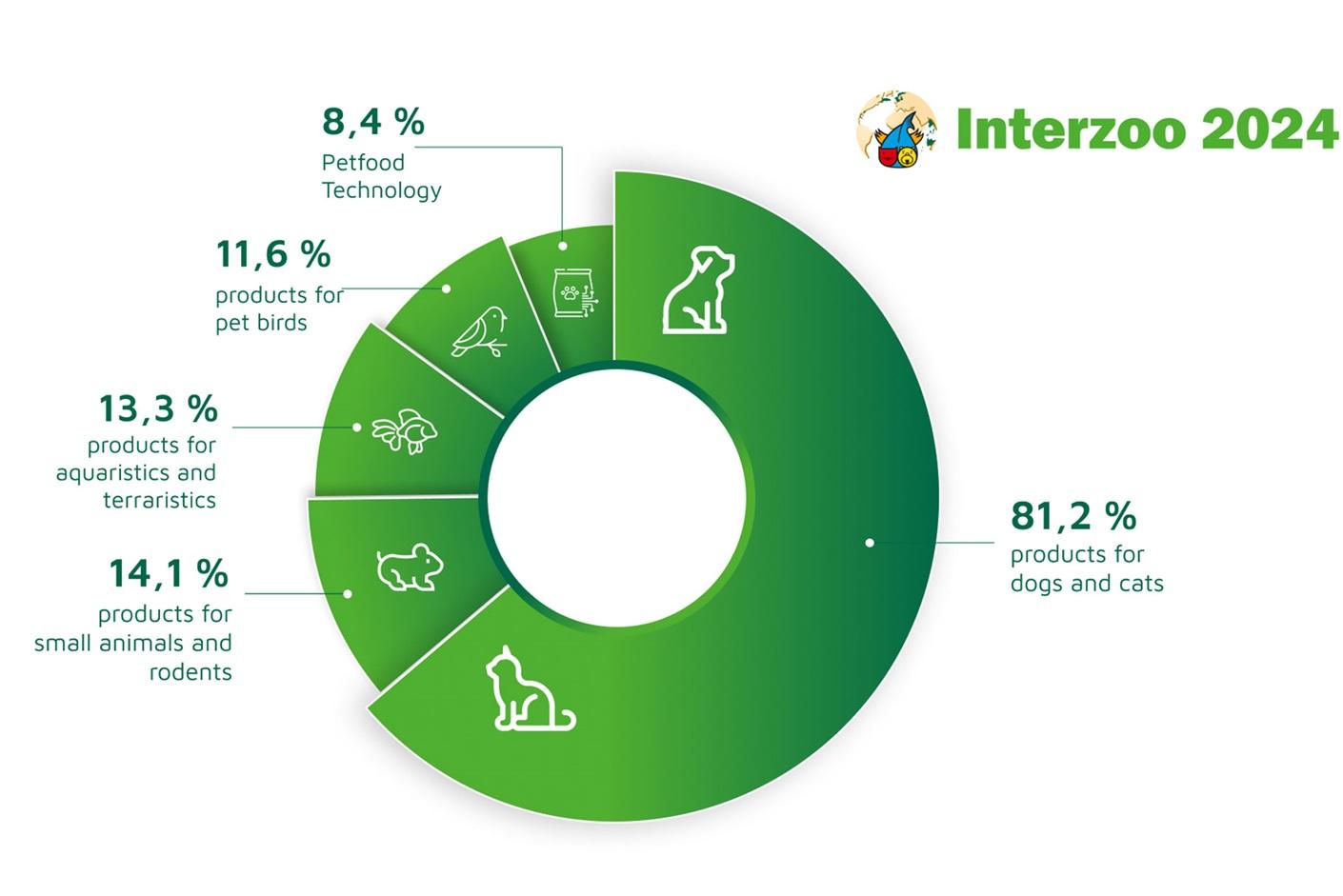 Market Information
Market Information
3+ MIN
15/04/2024
Flagship event for the pet supplies industry: world-leading fair Interzoo 2024 sold out
More than two and a half months before it starts on 7 May 2024, the leading international trade fair for the pet supplies industry is sold out – despite having a much larger exhibition space with an additional two halls compared to Interzoo 2022. As the largest and most important meeting place for the international pet supplies industry, Interzoo 2024 (7 –10 May) will once again be the world's most-used platform for new products and trends in the sector. As the industry's leading trade fair, Interzoo offers the most comprehensive product overview of all relevant segments in an expanding pet industry.
At the beginning of February 2024, Interzoo organizer WZF (Wirtschaftsgemeinschaft Zoologischer Fachbetriebe GmbH) announced a new record, with the number of exhibitors exceeding the 2,000 mark. Due to the consistently high demand, the remaining exhibition space has now also been allocated. Well over 2,000 companies from about 70 countries will showcase their products and solutions in 14 exhibition halls that cover an overall exhibition space of more than 140,000 square metres. 'The sold-out Interzoo halls that break records with regard to exhibitor numbers, exhibition space and internationality show the huge pulling power of Interzoo for the gradually growing international pet supplies industry,' says Gordon Bonnet, Managing Director of WZF and ZZF (German Pet Trade & Industry Association, the institutional sponsor of Interzoo). 'For trade visitors, there is no better opportunity on the globe to experience first-hand the incredible array of new products and exciting companies, to build networks, and to gain inspiration!'
Unique market overview
The strong international presence at the world-leading fair, which has an overseas exhibitor contingent of around 86%, ensures an unrivalled overview of the global market. After Germany, the countries with the largest numbers of exhibitors are China, Italy, the Netherlands, Turkey, the USA, Belgium and the UK. There will be a total of 15 national pavilions, from Brazil (two pavilions including one devoted to aquariums), Canada, China (two pavilions), the Czech Republic, France, Hong Kong, India, Italy, Korea, Malaysia, Taiwan, the UK and the USA.
WZF has noted an increase in registrations for stand space from some European countries, e.g. from Italy (+31%), Poland (+27%) and Turkey (+26%). There has also been stronger demand from outside Europe, e.g. from the USA (+60%), India (+34%) and South Korea, which has almost doubled its display area. China, which only sent 29 exhibitors in 2022 due to pandemic-related travel restrictions, accounts for the largest growth in display area with a fifteenfold increase. 'The stronger demand across all continents shows how important Interzoo is as a showcase for innovation and a gathering place for industry decision-makers from all around the world,' says Dr Rowena Arzt, Director Exhibitions at Interzoo organizer WZF.
Product segments at Interzoo 2024
As in the past, products for dogs and cats account for the majority of the exhibits, with 81.2 percent of all exhibitors representing this segment. The next largest product categories are small animals and rodents (14.1%), aquariums and terrariums (13.3%), ornamental birds (11.6%) and pet food technology (8.4%)1.
Many international visitors expected
In view of these record-breaking figures, Dr Rowena Arzt assumes there will be a lot of international visitors: 'The importance of Interzoo as a leading international fair and compass for a diversifying sector makes it the most popular setting for cultivating international contacts, dialogue and business.' Starting with the Petfood Forum Europe on Monday 6 May 2024, the week's activities at Interzoo will map the entire supply chain and creative power of the pet supplies industry through market insights, innovative special shows, and coverage of topical issues like sustainability.
Additional information can be found in the Interzoo App and online on the Interzoo Website
Also, you can see the supporting programme HERE
1 Data based on product category allocation of exhibitors in registration process.
Source: Interzoo
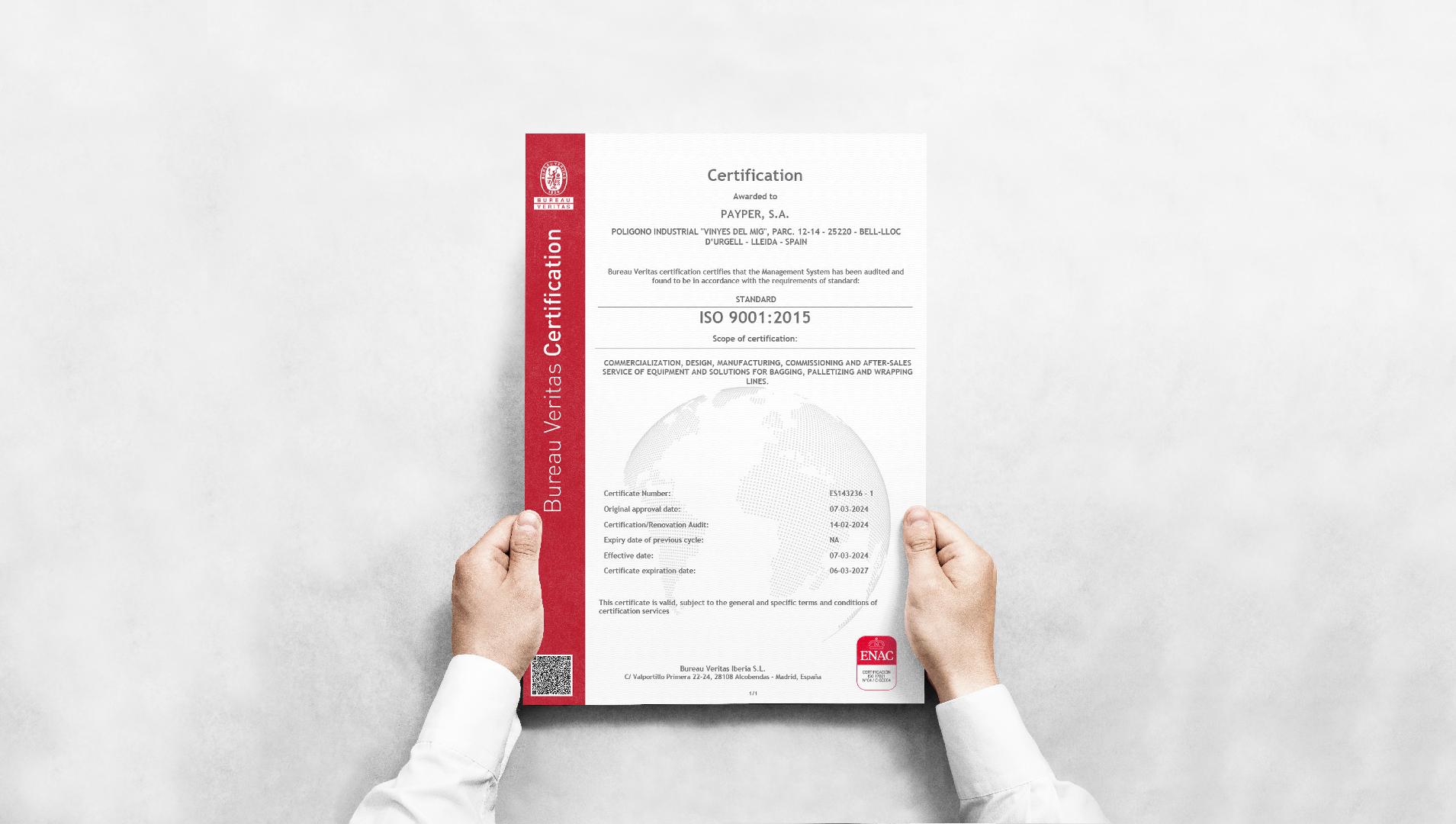 Market Information
Market Information
2+ MIN
12/04/2024
PAYPER receives ISO 9001 certification for quality management
We are pleased to announce that PAYPER has been certified to the internationally recognized ISO 9001:2015. The certification for PAYPER's quality management system was awarded on March 7, 2024, and issued through Bureau Veritas, a leading global certification entity.
PAYPER's certification covers a broad range of our operations, from engineering to sales, R+D, purchase, manufacturing, warehouse management, commissioning and services such as customer support and spare parts management. So, it covers all internal processes of our organization including the interactions with our suppliers and customers.
The rigorous criteria of the certification ensure ongoing analysis and improvement of product quality so that our solutions for bagging, palletizing and wrapping are even more aligned with customers' needs.
'Acquiring ISO 9001 accreditation validates our ongoing commitment to high standards of quality and excellence in all aspects of our business. Moreover, the certification process has been an opportunity to identify areas for improvement and ultimately strengthen our business.'
Josep Mª Godia, Managing Director at PAYPER.
At PAYPER, we are proud to reach this important milestone and remain dedicated to upholding our commitment to excellence for our valued customers.
What is ISO 9001?
ISO 9001 is a globally recognized certification standard that defines the requirements for establishing a Quality Management System (QMS). It was developed and published by the International Organization for Standardization (ISO).
This certification provides a framework for organizations to define, implement, maintain, and continually improve their quality management processes and procedures.
The ISO 9001:2015 standard is based on numerous quality management principles, such as a robust emphasis on customer satisfaction, a process-oriented approach, active involvement from top management and an ongoing commitment to improvement.
Compliance with ISO 9001 demonstrates an organization's ability to consistently provide products and services that meet regulatory requirements and focus on customer satisfaction. Many organizations worldwide seek ISO 9001 certification to demonstrate their commitment to quality and improve their overall performance.
Download PAYPER's ISO 9001:2015 Quality Certificate
Source: PAYPER.
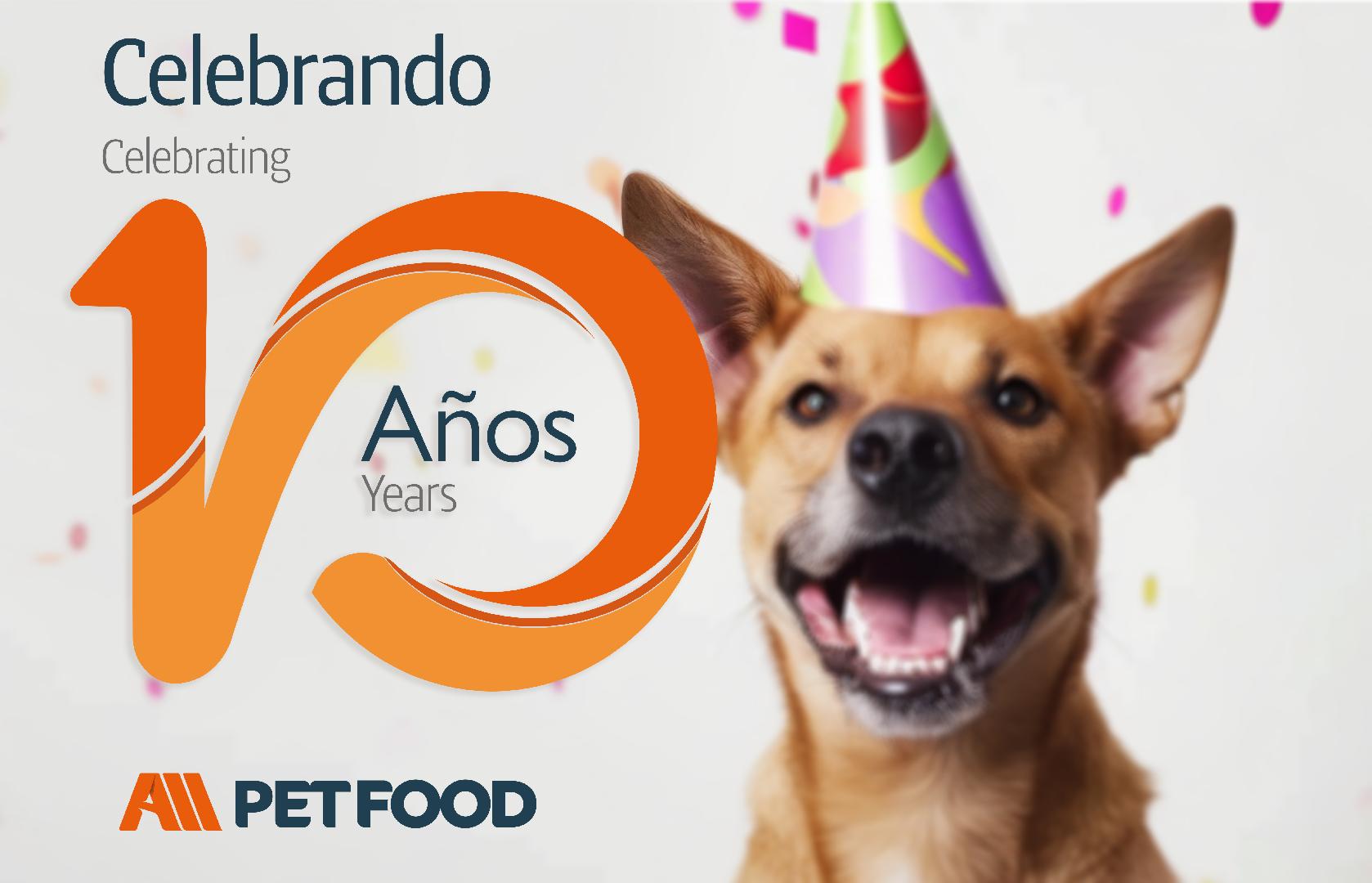 Market Information
Market Information
2+ MIN
11/04/2024
All Pet Food: Celebrating a decade of connections
At All Pet Food, we started this journey a decade ago with the clear misión of generating meaningful links that add value to the pet food industry. Since then, we have focused our efforts on creating solid bridges between suppliers and manufacturers, promoting the sector strengthening and the supply chain efficiency.
Thus we present ourselves as 'connectors', because we believe in union as a hub to drive each company, promoting collaboration, listening our clients needs, offering personalized solutions and evolving alongside an industry that required it.
In this video, Pablo Porcel de Peralta -CEO- and Iván Marquetti -Sales Manager-, both All Pet Food founders partners, share in first person the experience and growth in this period of time, as well as their future projection.
Throughout these 10 years, we have witnessed the constant transformation of the pet food industry, which has inspired us to think about our positioning.
Starting as a website, becoming leaders in information and developing channels such as our specialized magazine, conferences, events and market analysis, we accomplished to generate a different, dynamic and avant-garde network, which connects the most important participants in the sector.
Currently, we have presence in key markets such as Europe, the United States, Mexico, Central and Latin America, and we have more than 400,000 annual visits to our website.
In this opportunity we express our gratefulness to the great community we have had the privilege of working with during these ten years, it is an essential and necessary part of our path to continuous improvement.
We invite you to follow us on our social media to be announced of all the news we have prepared for this celebration.
Let's continue growing up together for more years!
Source: All Pet Food.
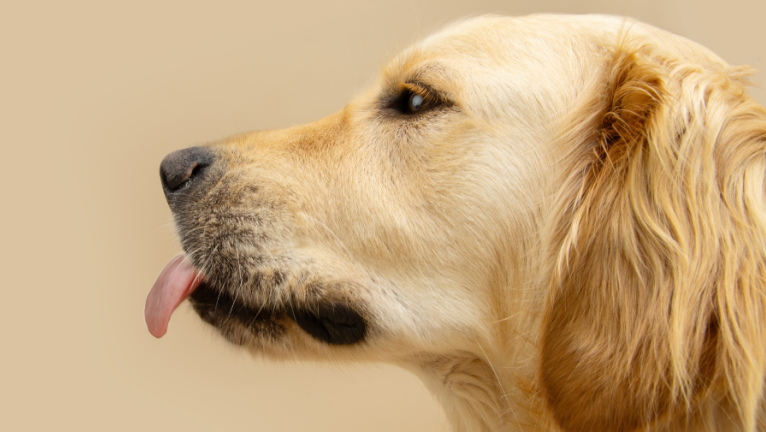 Market Information
Market Information
2+ MIN
09/04/2024
Partner in Pet Food’s private-equity owner halts sale talks
The private-equity owner of Partner in Pet Food has ended talks with potential buyers of the Hungary-based business. A report from The Financial Times this week, quoting unnamed sources, suggested investors Advent International and CVC Capital Partners had made a joint bid for Partner in Pet Food after making individual approaches. Budapest-based Partner in Pet Food has been owned since 2018 by private-equity peer Cinven Group. One of The Financial Times' sources said Cinven had previously been looking to value the company at around €2bn ($2.16bn). However, a source for Just Food, who asked not to be identified, said today (28 March) Cinven had decided to pause the discussions with bidders, deeming the offers for Partner in Pet Food to be undervalued given the market potential. Approached by Just Food, Cinven declined to comment, as did Advent. CVC Capital Partners has yet to respond to a request for comment. Partner in Pet Food, set up in 1999, sells into more than 30 countries in Europe, according to Cinven. The company supplies wet and dry pet food for cats and dogs to over 250 customers, including retailers, specialist pet chains and online customers. It employs more than 1,400 people, Cinven says. Bank of America and Goldman Sachs were working on the proposed sale of Partner in Pet Food, according to a Bloomberg report today, which added interest had been received from private equity and trade buyers. Goldman Sachs had not responded to Just Food at the time of writing to comment on that speculation, while Bank of America declined to comment. Partner in Pet Food had also not give a response. Former Unilever executive Gerald Kuehr was named Partner in Pet Food CEO in 2020. In 2021, the company snapped up two manufacturers in Poland – Mispol and Werbliński. Poland is one of ten European markets in which Partner in Pet Food has sales offices, according to its website. The company has 12 manufacturing facilities. The most recent year for which the group has posted annual sales is 2022, when it generated sales of around €793m. Source: Just Food
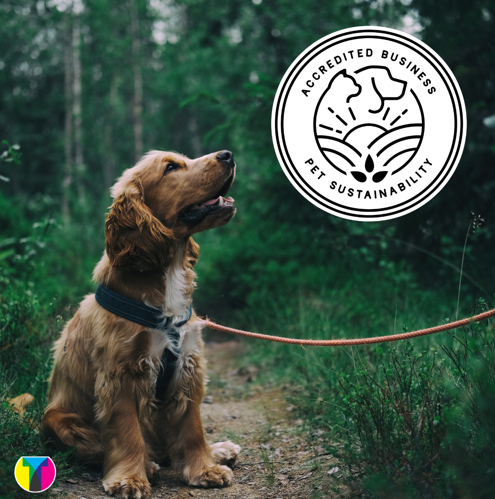 Trends
Trends
3+ MIN
08/04/2024
Truly Green or Greenwashed: One way pet owners can discern which pet brands are sustainable
"Green", "neutral," and "small carbon footprint" are no longer simply cool catch phrases to have on product packaging. These days, more and more consumers demand these attributes from the brands and products they purchase. However, consumers often find it hard to tell if their purchasing decisions are truly beneficial for the environment, as these very same terms can be vague and misleading. Fortunately, many brands and manufacturers in the pet market are responding to a consumer cry for transparency on these issues and taking steps to reduce the carbon footprints of their products, from ingredient sourcing right down to the packaging.
One organization that is key to helping pet brands toward their sustainability goals is the Pet Sustainability Coalition (PSC). It is a nonprofit that helps brands work with other responsible partners along the value chain and gives consumers the assurance that their hard-earned money is supporting sustainable and fair practices.
Tempo Flexible Packaging is among the companies that have earned accreditation from PSC, having done so in late 2023.
"Getting the accreditation from PSC helps solidify what it means to take steps to create a better future … and how genuine we are about our vision to be the preferred partner for sustainable flexible packaging in North America," said Optimist & CEO Leonardo Giglio.
To acquire the accreditation, Tempo completed an in-depth review of its business operations and passed a third-party verification audit, the company reported. To keep the accreditation moving forward, it is required to demonstrate year-over-year improvements on its environmental, social, and governance (ESG) commitments and continue doing its part to create a better world for future generations of people and their pets.
Tempo's vision is to be the preferred partner of sustainable and socially responsible flexible packaging solutions in North America. As part of this vision, it is important to the company that it not only produces packaging designed for a circular economy, but that it ensures that its business and manufacturing practices contribute toward a better future.
While the PSC accreditation is a formal recognition of the company's efforts, Tempo has been a pioneer in sustainable packaging design since 2015. That year, it received a PAC Global Sustainable Design Award for its first HarmonyPack—a recyclable pouch designed for a circular economy.
"We knew we had to create a new path for Tempo and for flexible plastics because it was the right thing to do," said COO Lee-Anne Giglio. "We could not only add value to our clients and the end consumer, but also contribute to a better system and a better product for future generations."
Today, the company's research and development team has developed HarmonyPack solutions for various categories, including all aspects of the pet industry.
In addition to pursuing the PSC accreditation, the company has strategically expanded its production capabilities and manufacturing facilities over the last year. Tempo is already a vertically integrated, full-service supplier and the expanded space will house Tempo's customer service, pre-press, sales, marketing, and sustainability teams. This frees up valuable room for additional production space and enables new flexible packaging options such as extra-large, pinch-bottom pouches that can hold up to 30 pounds of product.
Tempo is very fortunate to have built 54 years of exceptional partnerships within the pet industry and wants to offer brands support, knowledge, and, most importantly, transparency in the product life cycle and supply chain. The Pet Sustainability Coalition Accreditation not only gave the company that confidence and a standard to grow from—it also gave Tempo, and its industry partners, a powerful way to demonstrate that there is action behind the company's words.
Source: Pet Product News
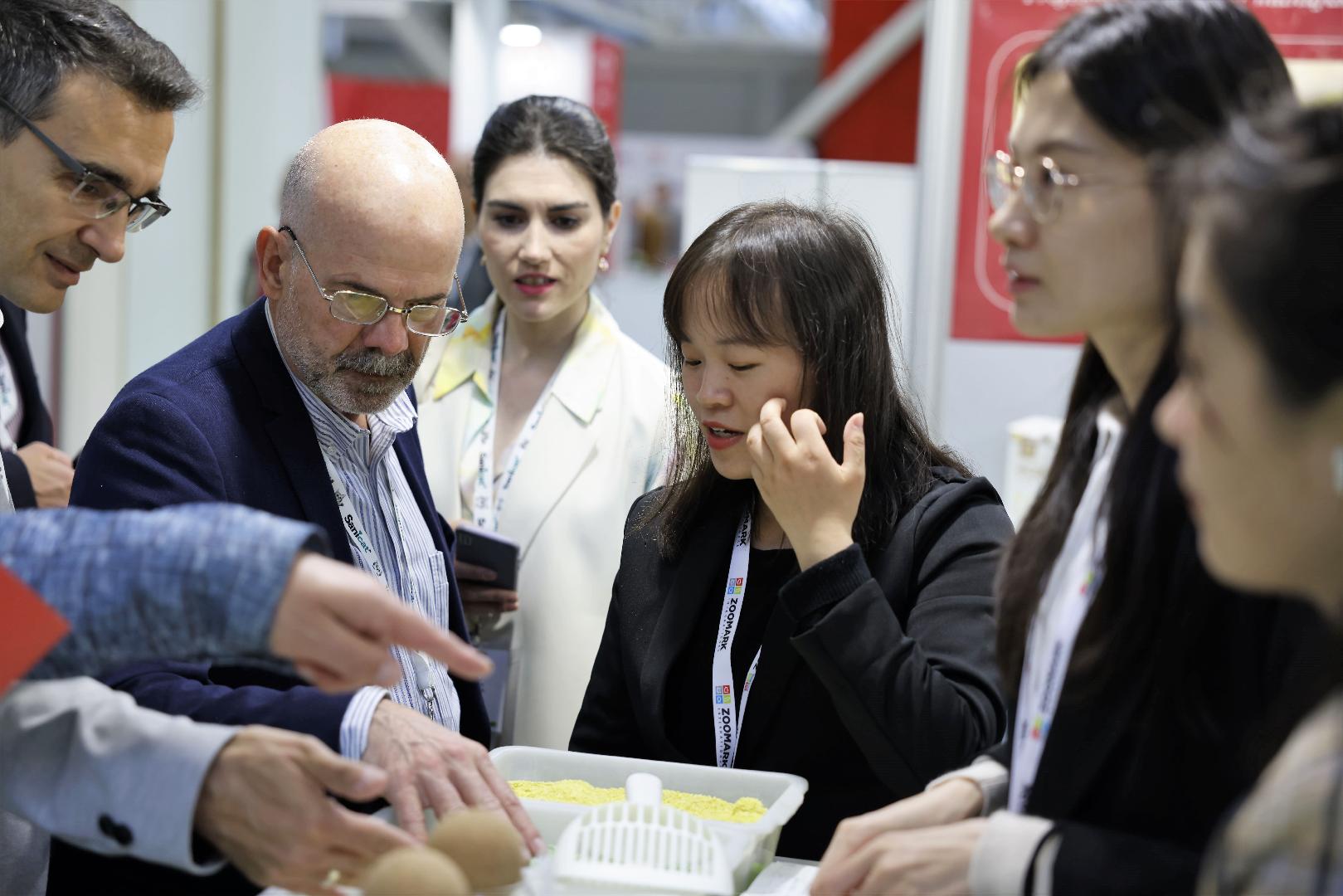 Market Information
Market Information
2+ MIN
05/04/2024
ZOOMARK Knows No Bounds: From Bologna to Bangkok
Zoomark is strengthening its collaboration with Pet Fair South East Asia, the leading fair for the pet market in Southeast Asia, to be held in Bangkok, Thailand, from October 30th to November 1st.
The new strategic alliance aims to promote B2B events in their respective countries, attracting visitors to each other's markets. As part of this exclusive collaboration, Zoomark represents a privileged connection between Italian companies and the Thailand fair. Zoomark will coordinate the attendance of Italian brands at Pet Fair South East Asia to offer businesses both visibility and opportunities within the Asian markets.
Italian brands interested in exhibiting in Bangkok can rely on Zoomark to book their individual exhibition space or reserve a stand in the Italy Pavilion. This presents a unique opportunity for visibility for all companies seeking new partnerships and for meeting key operators in the area (distributors and buyers) to export to Southeast Asia.
The 2023 edition of Pet Fair SEA saw the participation of 281 exhibitors from 40 countries and 10,000 professional visitors from 74 countries.
The pet markets in Thailand, Indonesia, Malaysia, Vietnam, the Philippines, and Singapore are experiencing rapid and significant growth (with a forecasted compound annual growth rate of 9% for the period 2024-2029), driven by increasing pet ownership, rising per capita income, and urbanization. It is, therefore, the ideal time to enter these markets.
Promoting the Excellence of Made-in-Italy
"Our longstanding collaboration with Pet Fair South East Asia is an example of how Zoomark has always aimed to create a network of strong international partners," says Pascale Sonvico, Sales and Show Office Manager at Zoomark. 'We are delighted to renew our commitment and seize this new opportunity to support and promote the excellence of Made-In-Italy in the Southeast Asian markets, ensuring the participation of Italian brands and amplifying the visibility of our exhibition."
Pascale Sonvico, Sales and Show Office Manager at Zoomark.
"We are extremely pleased to have consolidated our partnership with Zoomark through the organization of the dedicated Country Pavilion for Italy," says Johannes C. Kraus, Senior Project Manager at Pet Fair South East Asia. "We feel honored to have been recognized by one of the leading events in the international pet market as the reference platform for the industry in Asia. We are confident that the Italian companies participating will be able to enter or strengthen their presence in the Southeast Asian markets."
To join the Italy Pavilion or participate with your own stand at Pet Fair South East Asia 2024, please contact [email protected].
For updated news on Zoomark 2025 CLICK HERE
Zoomark is the international trade fair for pet food and pet care scheduled at BolognaFiere from May 5th to 7th, 2025. In the last edition in 2023, with over 68,000 square meters of exhibition space spread across 7 pavilions, it hosted 1,060 exhibitors from 57 different countries and 9 foreign collectives and welcomed 27,950 visitors, 62% of whom were from abroad.
Source: Zoomark
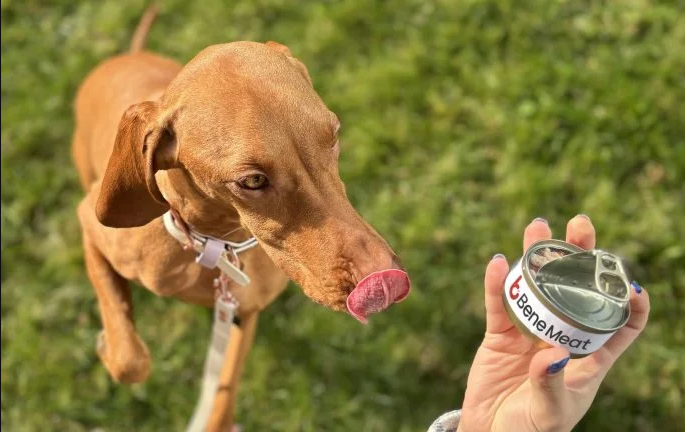 Ingredients
Ingredients
9+ MIN
04/04/2024
Might pet food provide better prospects for lab-grown meat?
The noise surrounding cultivated or lab-grown meat is increasing all the time but the level of activity involving the end product is not yet justifying the hype.
Hurdles, including the high cost of producing meat from animal cells, gaining regulatory approval and convincing customers and the end consumer that it's something they need and want, are either still to be successfully cleared or yet to be approached.
For all of the food-tech, or just plain tech, businesses looking to make a name for themselves and for all of the investment money that has flowed into what some see as, depending on the level of hyperbole, the future of food and the saviour of the planet, months and years go by without many of these businesses being much further advanced than when they started out.
In November 2020, US-based cultivated-meat business Good Meat became the first company to win approval to sell meat created in a laboratory from cells when it was given the green light by Singapore's regulator. The company, part of Eat Just, has since won similar approval in the US, alongside another company, Upside Foods.
However, as Josh Tetrick, the company's founder, told Just Food in December: 'Ultimately, we want to make millions of pounds of cultivated meat but we need to do a lot of work on things like cell density and reducing the cost of the growth medium.'
Tetrick said his business was making good progress but added: 'There's no doubt it is a massive challenge to be able to produce it on a large scale. This is a significant challenge for cultivated meat.'
Lab-grown meat and pet food
If the companies that have already won regulatory approval and have an end product on sale – albeit in a very limited way – see it as a 'massive challenge', what hope for everyone else?
Well, there are signs that cultivated-meat firms may have found a new target, one that would allow them to get their product to market more quickly, to cut down on cell-growth costs and require a less rigorous level of regulation: pet-food.
In November, Czech Republic-based Bene Meat revealed it was targeting the EU pet-food market and claimed to be the first to have listed its cultivated cells on the bloc's European Feed Materials Register.
No approval is required for animal feeds as long as they are safe and comply with existing regulations.
The Prague-based business, backed by medical devices company BTL, has been working on the development and technology of cultivated meat production since 2020.
Meeting the needs of pet-food manufacturers
Bene Meat said its pet food will be 'full of pure, high-quality animal protein, without the need for a single animal to die in its production'. Its product, like those of other cultivated-meat manufacturers, is produced in a laboratory in bioreactors by removing cells from a living animal and then growing them in a nutrient-rich medium.
Roman Kříž, the company's managing director, said in November: 'We know that at this stage of the research we have already met the needs of pet-food producers, who are constantly looking for ethically and economically meaningful ways to satisfy their demanding customers, pet owners, with their products.'
Price – especially of the growth medium – has often been a barrier to manufacturing at scale but Bene Meat said it has developed the technology to 'produce cultured meat in such a way that the resulting price is competitive in comparison with the prices of products made from traditionally-sourced raw materials'.
'There is no inherent reason why it [cultivated meat] should be costly. It's more a question of teething problems and problems of realisation,' Tomáš Kubeš, the company's head of strategic projects, says. 'Bene Meat intends to be a one-stop-shop so we have our own medium and cell lines.'
Without giving away company secrets, Vendula Kucerova, Bene Meat's head of sales and marketing strategy, adds: 'We have a cost-effective medium which means we can bring it to the market. Our medium with no FBS [foetal bovine serum] is something different.'
FBS is a by-product of the meat industry and is usually collected from blood at commercial slaughterhouses. Understandably, companies might want to distance themselves from this particular growth medium.
Structural issues
Kucerova makes another point about costs when it comes to using cultivated meat for pet food.
'There is a structural issue in trying to create something close to normal meat. For pet food you don't need to do that. It is in the form of processed meat,' she says.
Therefore the theory goes that the growth period is shorter, which would be useful when trying to scale-up production.
There always seems to be a 'jam tomorrow' element to when cultivated meat products will finally emerge into the daylight but Kubeš is confident Bene Meat is getting close.
'We are already talking intensively with [pet-food] manufacturers and hopefully in Q1 we will start small-scale production trials. 2024 will primarily be for testing,' he says.
'We have built a facility for the pilot scale trial and also hope to have an industrial scale facility by the end of the year to allow us to produce on a commercial scale.'
Assessing pet-food makers' demand for lab-grown meat
But why would pet-food companies want lab-grown meat for their products?
Kucerova says: 'Trends have suggested there might not be enough meat in the future and that will impact prices. So, the demand from pet-food manufacturers is quite high. They are looking at alternative protein sources. From feedback, we have found they want alternative protein at an affordable price.'
"Demand from pet-food manufacturers is quite high. They are looking at alternative protein sources"
Vendula Kucerova, Bene Meat
Her view would seem to be backed up by the development of pet-food based on alternative protein sources such as crickets.
Last month, Ÿnsect was granted authorisation by the Association of American Feed Control Officials to use de-fatted mealworm proteins within dog nutrition. It is the first time mealworm-based ingredients for pet food have been approved in the US.
US-based Hill's Pet Nutrition – owned by Colgate-Palmolive – is to test products for regulatory review and market evaluation based on animal protein created through fermentation by Bond Pet Foods.
The companies have also announced a second joint development agreement to create an additional animal protein for potential use in Hill's products. The aim is to 'develop a source of more sustainable animal protein to fulfil the dietary needs of dogs and cats'.
This search for alternative protein among pet food manufacturers has not been lost on Canada-based Cult Food Science.
In August, Cult Food Science announced a deal with Everything But to use the South Korean start-up's cell-cultivated chicken in its pet-food brands, which include Noochies, Marina Cat and Indiana.
The regulatory pathway for pet-food in the US requires approval from the Center For Veterinary Medicine, a branch of the US Food and Drug Administration.
In a statement at the time, Cult Food Science said: 'Our collaboration with Everything But is illustrative of our commitment to shaping the future of food at a truly global scale. These ingredients will allow us to reach even more customers with innovative products.'
Expanding on its plans in a recent conversation with Just Food, Cult Food Science CEO Mitchell Scott says it is also partnering with another cell-based meat company.
'We are also working with Umami Bioworks from Singapore. We are shipping from Singapore and have a co-packer in the US. We are looking at creating a pilot facility in Boston with Umami,' he says.
'The first product will be Marina Cat, a cultured-snapper product. We're really excited to have a product that can be tasted and tested and hope that will generate additional interest and investment.'
Initial scepticism
Scott admits he was sceptical about the idea of using lab-grown meat for pet food at first, largely because of how much it would cost to produce. 'My thoughts at first were that it doesn't make sense but, when I dug into it, I got excited and we saw an opportunity,' he says.
'There is a much quicker regulatory pathway [than food intended for humans]. And, on the cost thing, we can harvest cells mid-term because it doesn't have to have the same structure as meat if it is getting mixed in.
These are not necessarily 100% meat products which helps to make them profitable. Pet food is already a mix of stuff which is fine as long as it's high protein. And, from a consumer point of view, it's not animals eating other animals and it's also sustainable.'
"Given the demand for premium, speciality pet-food the time is right now"
Mitchell Scott, Cult Food Science
Scott believes Cult Food Science could be at the start of a growing trend.
'If it's profitable for us and makes sense at the scale we are doing it, the larger pet-food companies may look at doing it,' he says. 'It's about bringing the product to market and proving there's a demand there.
And some of the cultivated-meat firms are starting to have these conversations as it may mean they can get a product to market in six months rather than a few years. Given the demand for premium, speciality pet-food the time is right now.'
Analysts and investors have been quick to pick up on the potential for lab-grown meat and pet-food to have a symbiotic relationship.
Lever VC, a New York- and Hong Kong-based investment firm, was one of the first to see the potential of cultivated-meat businesses and recently led a $7m funding round in US-based Clever Carnivore, which is producing cultivated pork sausage with plans to unveil its prototype product, the Clever Bratwurst, this year.
On the potential market for cell-based protein in pet food, Nick Cooney, Lever's managing partner, who has previously spoken about Clever Carnivore's 'astonishingly low cost of production' and 'phenomenal science', says he has come round to thinking the idea could have legs.
"It will take a while for cultivated meat to get to a price point where pet food can work"
Nick Cooney, Lever VC
'Prior to this [involvement with Clever Carnivore], we would have been sceptical of cultivated meat for pet-food from a price point of view but Clever Carnivore has made me think again,' he says.
'Not one of the businesses we have looked at has even come close to what Clever Carnivore is doing in terms of production costs.'
Cooney stresses that, even so, 'it will take a while for cultivated meat to get to a price point where pet food can work, even within the premium segment'.
But he thinks ongoing premiumisation in the sector is an important factor here and add that 'cats and dogs are less discerning customers as long as it tastes good'.
'And there is a good story to tell in terms of sustainability,' he says.
Easier path to market
Hannah Cleland, a research analyst at Just Food parent GlobalData, can see why pet-food has triggered interest from producers of lab-grown meat.
'Cultured pet-food could find an easier path to market than cultured meat is finding for human consumption as there is significantly less red tape for approval of sale for pet-food,' she says.
'On the consumer end however, the biggest drawback will be the cost. Currently, pet owners are predominantly unwilling to commit to more sustainable choices for their pets with 81% globally saying they hadn't bought environmentally friendly/ethical pet-care products between April and June 2023.
'The number one reason cited for this was that sustainable pet products are deemed too expensive. That said, Bene Meat's claim that its cultured pet food is competitively priced against traditional pet food could be a breakthrough in the market.'
If the producers, investors and analysts are right, the noise surrounding cultivated meat soon may well be dogs and cats voicing their approval.
Source: Just Food.
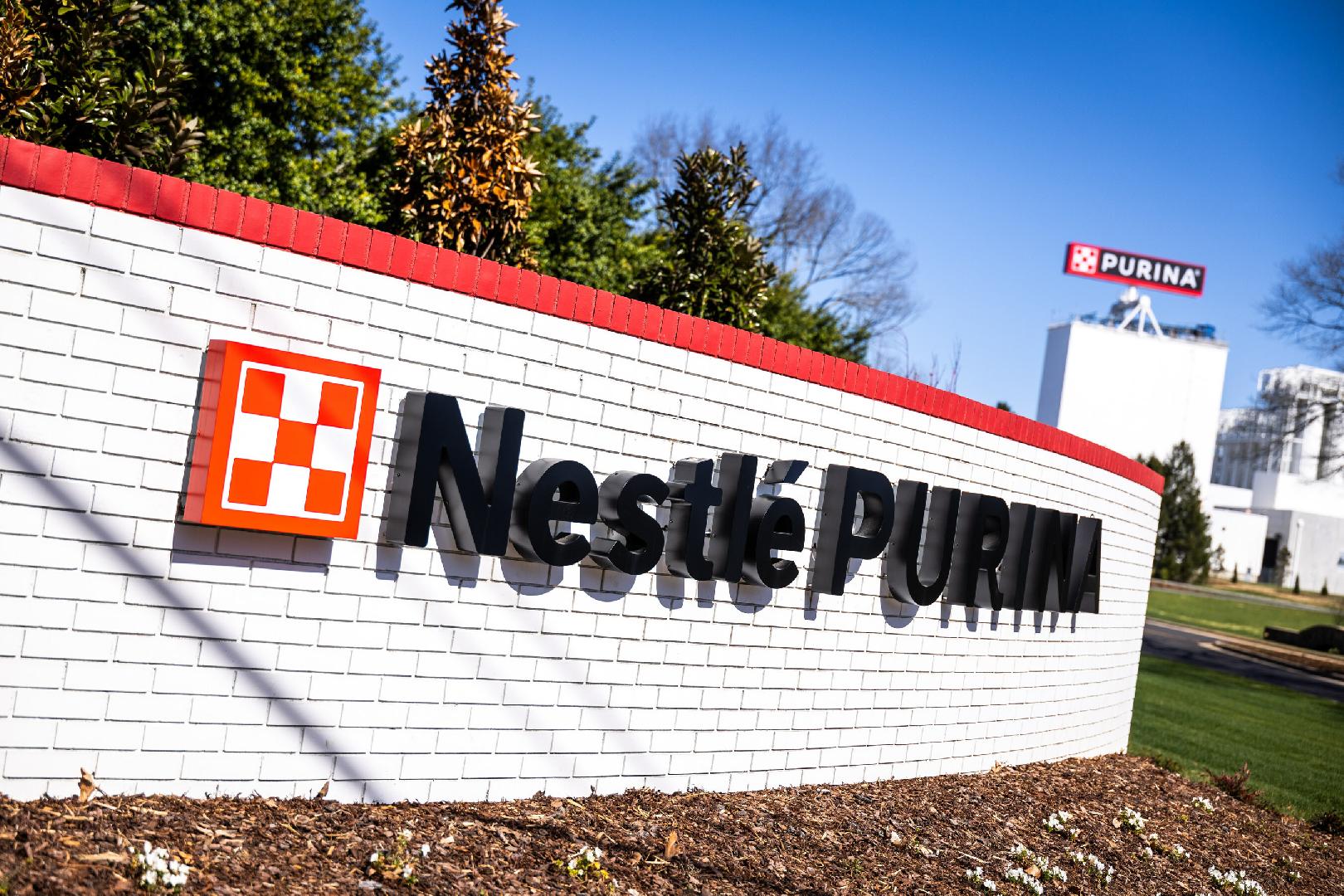 Manufacturers
Manufacturers
4+ MIN
03/04/2024
Nestlé Purina PetCare celebrates grand opening of Pet Food Factory in North Carolina
The grand opening celebration is the culmination of more than three years of work to bring the more than $450 million operation to life and establish the first Nestlé manufacturing facility in the state, company officials said. 'Demand for our products continues to grow and opening this new facility—our first manufacturing operation in North Carolina—allows us to better serve our consumers, particularly in the eastern and southeastern parts of the country,' said Nina Leigh Krueger, CEO of Purina in St. Louis. 'Our new factory in Eden is a huge step to continue meeting that growing demand, and the latest example of the continued investment being made across our U.S. manufacturing network. We're grateful for the support and partnership across the region, and are confident we're building a facility, and a passionate team, that will represent this community proudly for generations to come.' The Purina factory in Eden has already created more than 300 new positions, with plans to add more personnel in the future. Between 2020 and 2025, Nestlé is on track to invest $2 billion in Purina's factory and capital expansion projects to enhance its manufacturing footprint, officials said. A 24th factory is currently under construction in Williamsburg Township, Ohio, and is expected to be fully operational in the next 12 months. North Carolina Governor Roy Cooper recognized the significant investment and commitment from all parties to make the facility a reality. 'We continued to believe that the brewery in Eden could be used for a new manufacturer and we are excited that with this grand opening Nestlé Purina is ready to make a new home in North Carolina with 300 new employees,' said Governor Cooper. 'They will find here a well-trained, dedicated and diverse workforce along with support for their efforts to have this new plant embrace renewable energy and sustainability.' The grand opening celebration also featured North Carolina State Senator Phil Berger who spoke alongside several other Purina leaders including chief technical officer Nolan Terry, manufacturing vice president Casey Hansen and Eden factory manager Will Steiner. Rockingham County economic development director Leigh Cockram also spoke on behalf of the region. The new 1.3-million-square-foot Purina facility in Eden, which repurposes 80 percent of a former brewery's existing structure, features several modern technologies which transform and enhance the overall production process, including the first-ever vertical dryer installed in a Purina U.S. factory as well as automated systems in warehousing and the freezer space, officials said. The new facility also features a first-of-its-kind manufacturing experience center, designed to introduce modern manufacturing to the next generation of workforce, officials said. 'We have been looking forward to this day for a very long time and are so grateful for the contributions of so many incredible associates who've been working hard to bring this factory to life,' Steiner said. 'So much amazing collaboration has gone into this project, but what's most exciting is we can now really get to work and produce many of our pet food brands that pets love and owners trust. We have a great team in place to bring Purina's quality and safety standards to life in Eden.' Nestled on 1,350 acres extending to the Virginia state line, the new Purina factory in Eden, North Carolina, marks the 23rd Purina manufacturing operation in the U.S. Eden will operate as a zero waste for disposal facility. Across its manufacturing network, Purina is working to conserve water and achieve 100 percent renewable electricity at its factories by 2025. The grand opening event featured donations from Purina to local organizations granted through its Trust Fund, which was established by company founder William H. Danforth and supports partners working to positively impact communities where Purina has operations. Purina made a $30,000 donation to expand industrial and applied technologies programs at Rockingham Community College. The funds support the opening of a new center for workforce development building, enhancing the community's current and future workforces with training opportunities to better support high-technology employment opportunities, officials said. The 3D printing room inside the new structure will also be named in honor of Nestlé Purina. The check was presented to Mark Kinlaw, president of Rockingham Community College. Purina's $10,000 donation to Dan River Basin Association supports the organization's Tails on Trails initiative, designed to encourage pets and people to explore nature together. The program will host bi-monthly guided hikes designed with pets in mind and provide printed maps of dog-friendly trails around Rockingham County; as well as an online map featuring dog-friendly trails across the entire 16-county Dan River Basin. The check was presented to Tiffany Haworth, executive director of Dan River Basin Association. Purina also recently delivered a donation which helped renovate and reopen the Purina Bark Park inside Freedom Park in Eden; helped fund the installation of an electronic kiosk at the Rockingham County Veterans Park; and supported Help, Incorporated and the opening of a new facility, the SquareOne Family Justice Center, which provides crisis care to abuse victims in a centralized location. The local team regularly supports Rockingham County Animal Shelter and Friends of Eden Animal Rescue with donated product, and also helps feed the K9 officers of the Eden Police Force. In 2023, Purina invested more than $30 million to support programs that aim to bring and keep pets and people together and to forge partnerships that help communities and the environment thrive. Source: Pet Product News
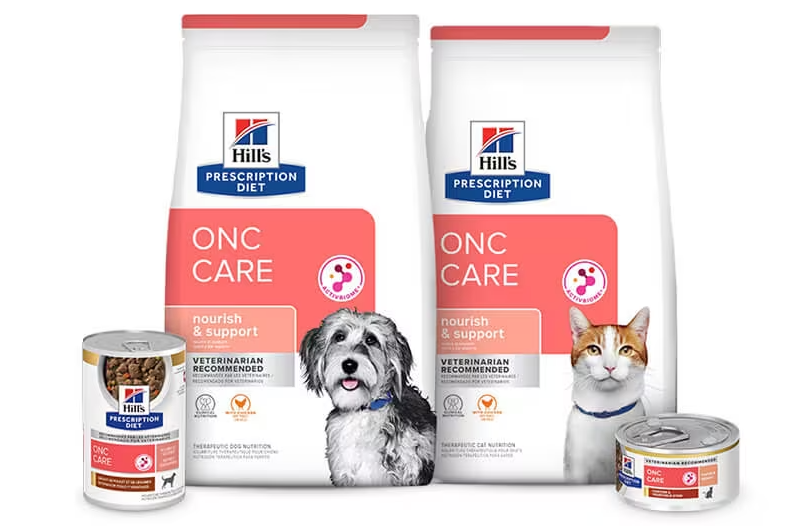 Veterinary
Veterinary
3+ MIN
01/04/2024
The story behind Hill’s Prescription Diet ONC Care — Nutrition designed specifically for pets with cancer
As part of its purpose to help enrich and lengthen the special relationships between people and their pets, Hill's Pet Nutrition recently launched Prescription Diet ONC Care — the first dry & wet pet food from Hill's designed specifically for pets with cancer.
When Hill's Pet Nutrition debuted its Prescription Diet food 75 years ago, it became the world's first veterinarian-prepared food for the nutritional management of canine disease. Today, Hill's Pet Nutrition, a division of Colgate-Palmolive, continues its legacy of improving the health and well-being of pets with a food that's backed by science, innovation and technology.
The impetus to create a food specifically for pets with cancer came from veterinarians and scientists at Hill's Pet Nutrition, who understand dogs and cats with cancer struggle to get the nutrition they need.
'One of the insights we received from veterinarians is how frustrating and debilitating cancer management is for pets and pet owners,' said Leslie Hancock, Chief Medical Officer and Worldwide Director of Clinical Nutrition Research at Hill's Pet Nutrition. According to the American Veterinary Medical Association, almost half of dogs over the age of 10 will develop cancer.
'Cancer treatments often make pets feel sick, and often lose their appetite as a result,' Hancock added. 'On top of suffering from cancer, pets are also suffering nutrient deficiencies from the lack of a balanced diet.'
To respond to this feedback, team members at Hill's Pet Nutrition brought their findings to the company's upstream research and innovation team, which works to find new, cutting-edge technologies that can positively impact pet health.
'And what do you know? They had already been working on technology that would improve the palatability, or preferred taste, of pet food with microbiome technology that helps address the impact cancer and treatment can have on the intestinal microbiome and stool quality,' Hancock said.
By utilizing this technology and improving palatability — through the optimization of macronutrients like protein and fat, and processing the food in a robust manner — Hill's Pet Nutrition created a food that even the most unwilling of appetites, especially those of pets with cancer, would eat.
'Prescription Diet ONC Care's unique formula allows for small meals to make a big impact,' said Madison Amundson, Associate Scientist at Hill's Pet Nutrition.
In February 2023, scientists at Hill's Pet Nutrition, including Amundson, published findings about Prescription Diet ONC Care's effectiveness in Veterinary Sciences, an international scientific, peer-reviewed journal. Among the results, dogs showed a high acceptance of Prescription Diet ONC Care within the first day — with continued eating enthusiasm over the next month.
Though Prescription Diet ONC Care has been providing nutrition to dogs and cats for just the past six months in certain markets, members of the Hill's Pet Nutrition team have already received positive feedback.
'We underestimated its popularity and what it can be,' Hancock said, adding that veterinarians have prescribed Prescription Diet ONC Care for pets who have issues receiving a balanced diet, like those who suffer from other causes of reduced food intake (otherwise called anorexia or dysrexia).
Going forward, team members at Hill's Pet Nutrition will continue studying the impact of Prescription Diet ONC Care and refining and improving the food. But this achievement hasn't been lost on the team at Hill's Pet Nutrition.
'Prescription Diet ONC Care has been a fascinating exploration into how we can take applied food science and create a diet with a positive therapeutic intent,' Hancock said.
'It just kind of gives a good overwhelming feeling that this product is finally out there to help those who really need it,' Amundson added. 'This is a new milestone in the oncology world for a food that's really designated for pets with cancer.'
Hill's Pet Nutrition Prescription Diet ONC Care is now available in North America, Europe, Latin America, the Middle East, Africa and Japan. By the end of 2024, the food is expected to launch in Australia, New Zealand and Asia.
Source: Colgate-Palmolive.
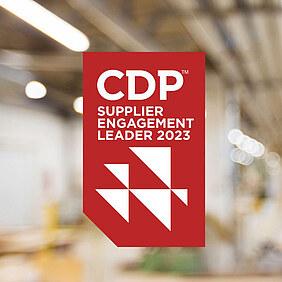 Market Information
Market Information
2+ MIN
28/03/2024
Supply chain rating: Symrise recognized for climate protection in its supply chain
Symrise has been making efforts for years to ensure that its suppliers increasingly satisfy strict climate protection criteria. 'With more than 5,000 suppliers and widely ramified supply chains, it is essential that we have the right framework conditions in place,' says Bernhard Kott, Chief Sustainability Officer at Symrise. In line with the German Supply Chain Due Diligence Act, the company subjected all its suppliers to a sustainability risk assessment. Moreover, Symrise aims to procure 100 percent of its strategic biological raw materials from completely sustainable sources by 2025. Helmut Frieden, Vice President Corporate Sustainability: 'We have set ourselves other ambitious goals as well. For example, by 2030, we intend to bring the greenhouse gas emissions generated by our own business activities down to net zero.'
Just as in the previous year, the Holzminden-based company's commitment earned it a top A grade from the non-profit organization CDP in 2023. 'This excellent result in the rating motivates us to continue our chosen path. In the future, we want to increase the number of suppliers who define their own environmental targets as part of the CDP Supply Chain Program. After all, sustainable raw materials sourcing exerts a substantial impact on our long-term success. More and more customers and consumers are attaching importance to transparency and traceability in the supply chain,' says Bernhard Kott.
Symrise assumes a leading role in the supply chain
Since 2018, the non-profit organization CDP has used its Supplier Engagement Rating (SER) to evaluate the cooperation between companies and their suppliers regarding climate issues. Some of the assessment criteria include:
how the company integrates climate matters into its business strategy,
what targets the company has set in terms of reducing greenhouse gas emissions,
how high the emissions in the supply chain are (Scope 3 emissions), and
how the company incorporates suppliers into its climate protection measures.
The Supplier Engagement Leaderboard identifies companies that are actively cooperating with their suppliers on climate protection. An organization's average upstream emissions are around 11.5 times greater than their direct operations. Because of this, organizations have much greater potential to reduce global emissions by influencing their supply chains. 'As a Supplier Engagement Leader, Symrise is demonstrating supply chain leadership, a prerequisite for the transition towards a net-zero, nature-positive future,' says Simon Fischweicher, Director of Supply Chain and Reporter Services, CDP.
Source: Symrise.
 Market Information
Market Information
2+ MIN
22/03/2024
Record-breaking attendance for VICTAM and GRAPAS ASIA 2024
The event, held from March 12 – 14 at BITEC in Bangkok, welcomed 315 international exhibitors from the animal feed, pet food, aqua feed, as well as the rice, grain and flour processing industries. This year's event showcased an array of innovations and facilitated key industry connections, underscoring its role as Asia's most comprehensive exhibition for these sectors.
VICTAM Asia and GRAPAS Asia experienced an unprecedented 42.5% increase in visitors from the last edition in 2022. This growth indicates the growing interest and importance of the event in the sector. This edition's success marks a significant milestone in the industry's recovery from the Corona period, showcasing resilience and renewed post-pandemic growth.
The exhibition was honored to host a diverse array of industry leaders and decision-makers, including top executives from over 40 leading companies such as AMP International, Bogasari, Cargill, and CPF Worldwide. The organization also welcomed ASEAN investors, presidents of relevant associations, ambassadors, and university professors.
During the exhibition, visitors could also attend a high-quality and extensive conference and technical seminar program. A total of 141 speakers from 14 countries delivered compelling presentations on a wide range of topics, ranging from the future of livestock feed to innovations in shrimp farming, feed safety, and milling technology.
The Victam Foundation hosted the 3rd International Feed Technology Congress (IFTC) with Wageningen University. Chairman was professor Leo den Hartog and dr. Mai Anh Khoa (Thai Nguyen University – Vietnam), dr. Nazri Nayan (Universiti Putra Malaysia), dr. Pairat Srichana (CP Group), and dr. Thomas van der Poel (WUR) spoke about the developments and challenges in the ASEAN feed industry.
Another interesting conference was the 'Flour Milling Maximized', where the continuous transformation of the wheat processing industry was discussed by Adi Witono (Bogasari), Peer Hansen (Eye-Grain Aps.), Sirichai Songsermpong (Kasetsart University) among others.
During the Thai Feed Mill Association (TFMA) conference, Mr. Pornsil Patchrintanakul (President TFMA) , Dr. Witthawat Songsujaritkul (Trouw Nutrition Thailand), Mr. Amnat
Chidthaisong (King Mongkut's University of Technology Thonburi) spoke about modernizing and exploring the future of livestock feed in 2024 and managing the carbon footprint in feed. After the conference there was a greet and meet between the Thai feed millers and exhibitors, where millers could address their needs and challenges in their feed mills.
The "Networking Night" at VICTAM Asia successfully brought together over 250 industry professionals, including leadership from the Thai Pet Product Industry Association (TPIA) and more than 40 media representatives from Thailand and abroad. This event served as a platform for attendees to connect with leading exhibitors and discuss the latest technological advancements in the livestock industry, demonstrating the significant interest and engagement across the global community.
The next edition of VICTAM Asia and GRAPAS Asia together with Health & Nutrition Asia is scheduled for March 10 – 12, 2026, at BITEC, Bangkok. For more details, please visit www.victamasia.com.
Source: VICTAM Asia.
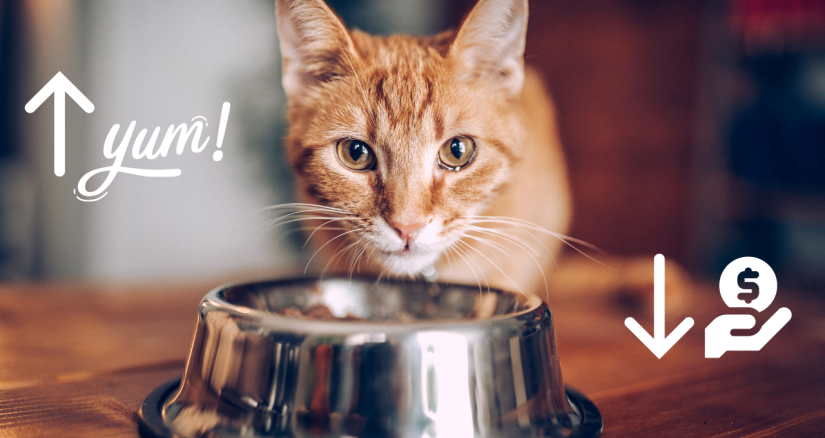 Market Information
Market Information
2+ MIN
21/03/2024
Case Study: BSM Partners increases formula palatability while decreasing formula cost
The challenge
Raw material supply and pricing are two of the primary drivers of increases in pet food prices that have skyrocketed since late 2020 and early 2021. Pet food manufacturers are faced with critical choices. Reformulating to reduce the ingredient cost of their products still leads to added costs if pet food packaging must be updated and decreases in product performance, either in product appearance, palatability, or functionality. Increasing the MSRP can cost loyal consumers, especially for premium products that are already demanding a high market price.
A startup with ultra-premium cat food products came to BSM for their expert formulation team, hoping to find the following solutions:
Decrease formula cost.
Increase formula palatability.
The solution
BSM Partners' Product Innovation Practice utilized their formulation and product development expertise to streamline reformulation. While cost-savings projects focusing on reformulation can yield ingredient savings, there is always a concern that the cost-savings on ingredients will be outweighed by other changes.
The client had unique packaging that was not expensive to change and had already done extensive ingredient testing, which enabled the BSM Partners' team to move quickly and implement the following approach:
Reformulated product, prioritizing optimal nutrition for cats and increasing the nutritional quality of the formula while decreasing overall formula cost.
Focused on palatability enhancing formula changes, like increasing organ meats.
Coordinate palatability testing to confirm with cats directly.
- Paired preference testing against old formulas.
- Acceptability testing.
The result
All formulas saw a significant cost reduction. The client tested multiple formula options, with the second round of reformulations testing most favorably in the cat feeding panels. Not only did the product cost less to produce and feed better than their initial launch formula, but it also provided more optimal nutrition for cats.
Highlights
16 - 52% reduction in price across all formulas.
2:1 preference in cats for the new formula.
BSM Partners
BSM Partners is a leading pet and human food consulting firm. BSM Partners is a collective of professionals across various industries, backgrounds, and life experiences. We leverage our shared expertise for our clients and draw on our deep connections in the industry to help them succeed. We are prepared for every challenge a business might face. From product development to replenishment, we have it covered. Our services include research, consumer insights, product innovation, food safety and quality, regulatory, nutrition, veterinary, transformation, operations support, and engineering. With BSM Partners as part of your team, nothing is impossible!
Source: BSM Partners.
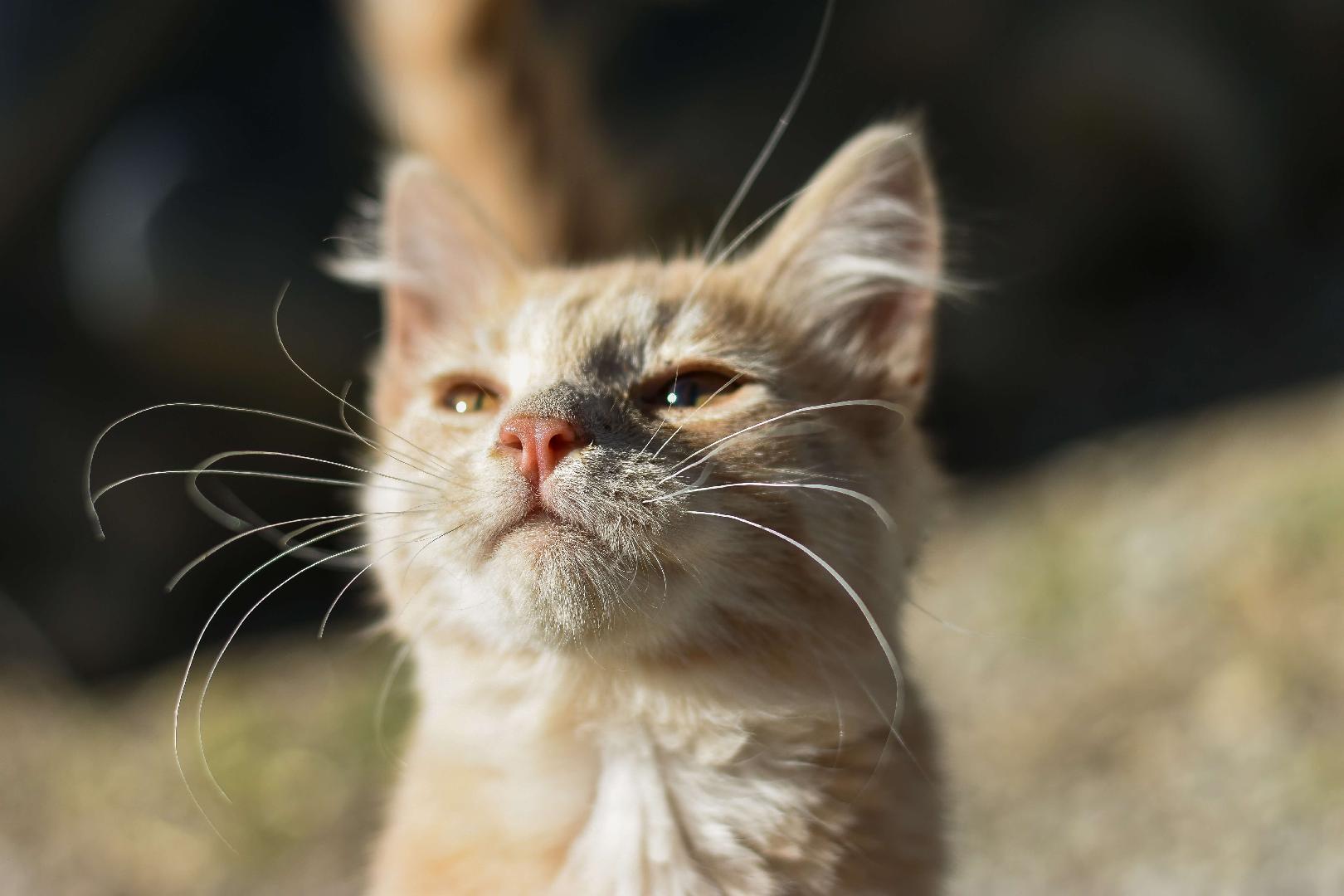 Cats
Cats
3+ MIN
20/03/2024
Cats’ noses appear to function like powerful aroma analysis equipment
Published in PLOS Computational Biology, the study was funded by Waltham Petcare Science Institute and led by Ohio State University, Monell Chemical Senses Center and the University of Pennsylvania.
These new findings deepen our understanding of the domestic cat's enhanced sense of smell, aiding new strategies to meet cats' food preferences.
Researchers created an anatomically accurate 3D computer simulation of a domestic cat's nose to understand how cats smell. They used a variety of techniques to create the simulation, including high-resolution micro-CT scans to generate an accurate model of a cat's nose. The simulation of air and odor flow through the virtual cat nose revealed similarities with a parallel coiled gas chromatograph.
In basic gas chromatography, the substance being analyzed is vaporized and carried by a steady flow of gas through a tube. Different chemical components in the substance interact with the tube in distinct ways, which enables them to be separated and identified.
In a cat, its complex nasal structure is made up of multiple tubes, like a parallel coiled gas chromatograph, making the process even more efficient than the basic chromatography technique.
'We have partnered with leading institutions to further understand cats' sense of smell', says Dr. Scott McGrane, sensory science expert at the Waltham Petcare Science Institute. 'Computational Fluid Dynamics (or CFD) is usually used to solve engineering questions related to how fluids flow. In our case, we have applied CFD to study airflow and how aroma compounds move through the cats' nose. Cats' noses have a complex structure that enhances their ability to smell, akin to the snail-like coiled cochlea which we know enhances hearing sensitivity'.
'This new research shows a cat's nasal structure is about 100 times more efficient in detecting aroma compounds than having a single straight tube, which most amphibians have', Dr. McGrane added.
The study and findings deepen our understanding of cats' enhanced sense of smell and present the potential for future computational and behavioral studies on the palatability of cat food, including in the area of new sustainable protein sources.
It's a topic we are exploring through our sensory science work, which aims to further our understanding of the sense of smell and taste in cats and dogs.
Our recent research has discovered new insights into the taste perception of pets by studying the sensitivity of taste receptors using a range of approaches, including computational modelling. One study looked into bitterness and its relationship with toxicity for dogs, while another explored the kokumi taste receptor of cats, which is described as a taste enhancer rather than a taste on its own.
We are committed to using scientific research to gain a better understanding of how cats and dogs experience and enjoy the food they eat. It means we can continue meeting their needs nutritionally, while at the same time ensuring they savor their meal, for happy pets, as well as healthy pets.
Source: Whaltam PetCare
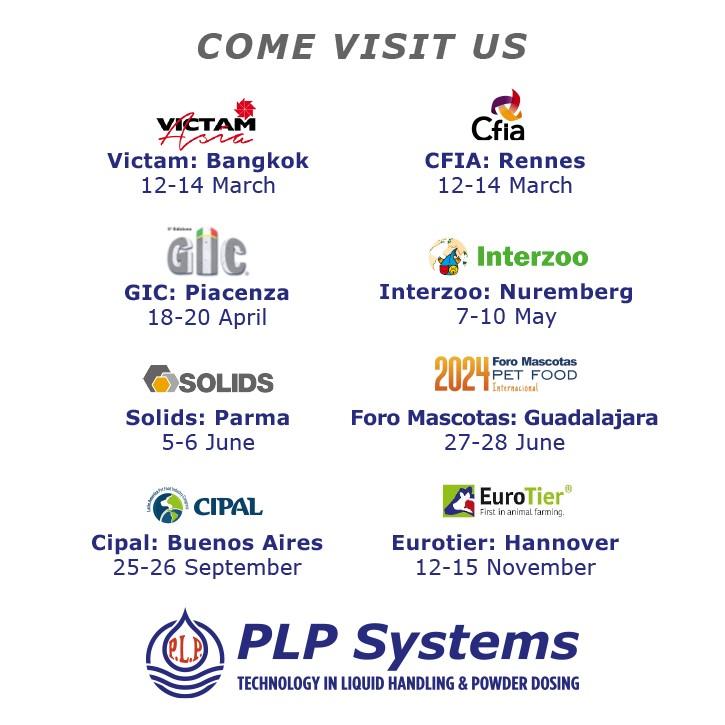 Market Information
Market Information
3+ MIN
19/03/2024
PLP Systems: International Fairs and Conferences continue in 2024
The 2023 trade show season has been a great success for PLP Systems, leader with its liquid and powder dosing technologies.
Operating across various sectors such as: livestock, milling, pet food, aqua feed, enology, food & beverage, fertilizers, seeds, chemicals, cosmetics, and the concrete industry, the company participated in nine fairs across Europe, Asia, and South America, covering all the sectors in which it operates and sharing its expertise and innovation.
Now, the company is gearing up for an equally eventful 2024, offering a comprehensive range of machinery and components for dosing, greasing, mixing, spraying, and homogenizing liquids, powders and additives. PLP Systems looks forward to meeting clients, partners, and professionals at various events worldwide.
CFIA, Rennes: March 12-14. As one of the most important agri-food fairs in France, PLP Systems will showcase its expertise in food coating and micro-dosing technologies. Participants will have the opportunity to discover the MDP batch micro-dosing system for powders.
Victam, Bangkok: March 12-14. PLP Systems is excited to participate in this comprehensive trade show and conference for the animal protein production supply chain and livestock industry in Asia. Managing Director Marco Prati will hold two conferences organized by International Pet Food.
On March 11th, he will provide insights into our coating technologies at the Petfood and Aquafeed Extrusion Conference.
On March 13th, he will provide insights on handling minor ingredients and additives in feed production at the Build My Feedmill conference at the Build my Feedmill conference.
GIC, Piacenza: April 18-20. The only Italian fair dedicated to the concrete industry is an opportunity for PLP Systems to showcase its latest technologies for complete premix production lines and precise dosing systems for liquids, powders, and additives.
INTERZOO, Nuremberg: May 7-10. Returning after a two-year wait, INTERZOO is one of the world's major pet food fairs. PLP Systems will present its flagship technology for the pet food sector: the MT, a complete machine for coating and greasing pellets, kibbles, and other granular products.
SOLIDS, Parma: June 5-6. Following the success of the previous edition, SOLIDS Italy returns as a powerful network of professional fairs for granular material, powders, and bulk solids technologies. PLP Systems looks forward to presenting its micro-dosing technologies.
Foro Mascotas Pet Food Internacional, Guadalajara: June 27-28. Participating in one of the most important pet food industry fairs in Latin America, PLP Systems is eager to explore the latest trends in this evolving and growing market.
CIPAL, Buenos Aires: September 25-26. Organized by All Pet Food, this congress aims to update on the latest trends in the Latin American pet food industry. PLP Systems will present its innovations, including high-precision dosing systems and machines for coating and greasing products.
EUROTIER, Hanover: November 12-15. The world's largest event dedicated to animal production, provides an opportunity for PLP Systems to assert its leadership in providing complete and efficient solutions for the rapidly evolving global livestock industry.
The 2024 trade shows will once again be an opportunity for PLP Systems to strengthen its position with dosing, greasing, spraying, and more.
The company looks forward to meeting you in person in Europe, Asia, and Latin America!
Source: PLP Systems.
 Market Information
Market Information
3+ MIN
18/03/2024
How an AI-Powered dog food brand secured $2 million in seed funding after launching its first product
Mahsa Vazin is no stranger to innovation.
The scientist started her career at the Redwood City, California-based Impossible Foods, where she worked in research and development. But once she adopted her dog, Paco, she started to think about how she could use her knowledge in the field of nanoscience to ensure he got the best nutrition possible--leading her, in 2021, to found PawCo, a San Francisco-based plant-based pet nutrition brand.
Vazin bootstrapped the company to create its core ingredient: GreenMeat, its plant-based meat, which it developed using artificial intelligence to optimize both its nutrition and palatability. In 2022, PawCo officially launched.
In February, the company announced a $2 million seed raise led by Elevate Ventures, which Vazin hopes will further drive PawCo's growth. The plant-based pet food market, valued at $26 billion in 2021, is projected to grow to $57 billion by 2032, according to the global market intelligence company Future Market Insights.
Vazin shares how the company secured its funding and what it plans to do with that capital.
What prompted this round of fundraising? When and how did you go about it?
"We bootstrapped and launched our first product about a year ago, then we started talking to 100 investors and built a great network, and went from $0 to $1 million ARR within a year, and the growth was exponential. We found an early product-market fit, and we believed this is the right time to scale the operation and launch new products. The $2 million seed funding round, led by Elevate Ventures, as well as other angel investors such as Arash Ferdowsi, co-founder of Dropbox, helps us take PawCo to the next level and prepare to raise our Series A in nine to 12 months."
What was your fundraising journey like?
"The tipping point was when we won the in-prize pitch competition out of 450 startups (that attended globally) in August 2023 and showed exponential growth in our revenue and metrics. After that, we received enormous inbound interest to invest in this round. In addition, we used our extended network of advisers to get introductions to strategic investors, actively investing in the pet industry and consumer goods industry. Even though the market situation was not the best, we were able to close the round within weeks and we are on the right track to raise our Series A in the next nine to 12 months."
What do you plan to do with this funding?
"With this funding, we'll be able to scale our operations by opening a second production facility [a Midwest location to complement the current facility in California]. Additionally, we'll further invest in growth, research and development, new recipes, and marketing tactics to drive awareness for the plant-based pet food category. We intend to solidify the plant-based pet food category through market expansions, new production facilities, and big product launches. PawCo is looking forward to growing and providing pet owners with healthy and nutritious options for their dogs, while also creating a product that's safer and more sustainable for the planet."
Source: Inc.
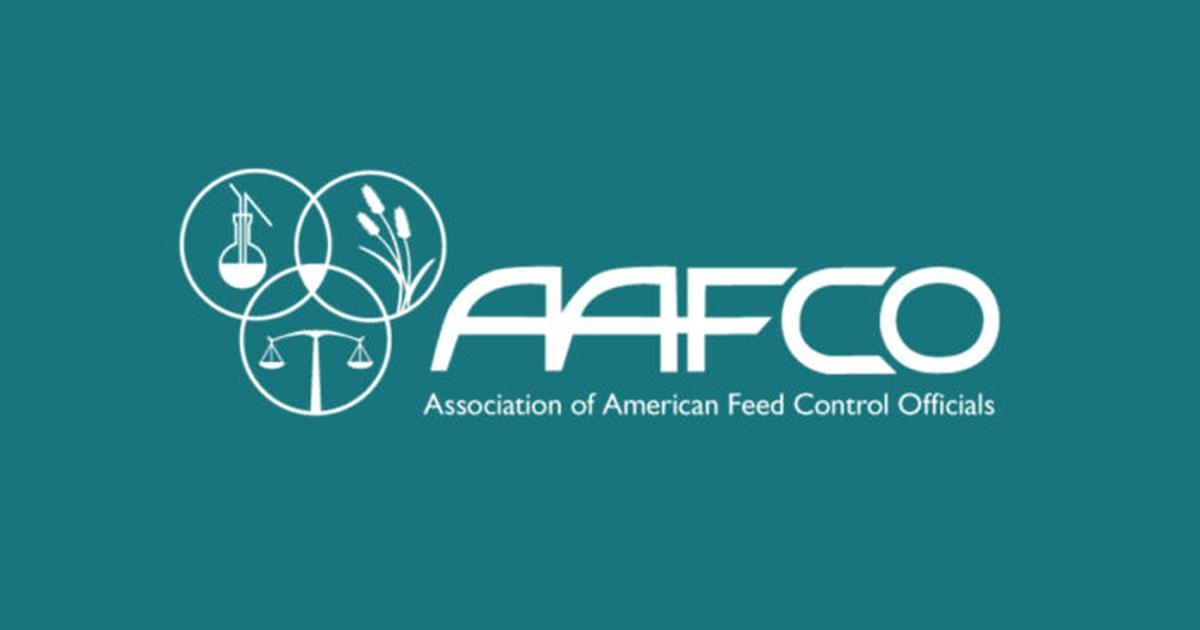 Market Information
Market Information
3+ MIN
15/03/2024
AAFCO shares concerns regarding H.R.7380, the Pet Food Uniform Regulatory Reform Act of 2024
The Association of American Feed Control Officials (AAFCO), an independent organization that guides state, federal and international feed regulators with ingredient definitions, label standards and laboratory standards, shares its concerns for the current version of the proposed federal legislation that would reduce state oversight and authority to review the marketing or labeling of pet food.
H.R.7380, the 'Pet Food Uniform Regulatory Reform Act of 2024' or the 'PURR Act' was introduced in Congress on February 15, 2024, with the intention of creating a more streamlined federal regulatory process that would prohibit state governments from directly or indirectly establishing, maintaining, implementing, or enforcing any authority or requirement relating to the marketing or labeling of pet food.
AAFCO is concerned the proposed legislation, as it's currently presented, could have negative ramifications for consumer protection, reduce pet food label transparency, and jeopardize the safe advancement of pet food products.
'State feed programs are the first line of defense protecting consumers from misleading or mislabeled pet food products,' shared Austin Therrell, executive director of AAFCO. 'Today, many state regulators proactively inspect pet food labeling before products hit the market to ensure that any marketing claims on the label or packaging are accurate and have the necessary scientific data to validate the statements. Under the new PURR Act, this important layer of consumer protection would completely go away.'
Most state feed programs in the United States support the Food and Drug Administration (FDA) by providing premarket reviews of pet food labels to ensure that permissible marketing claims are substantiated by data and are not false or misleading to the consumer. H.R.7380 would allow pet food manufacturers to distribute pet food products 'self-proclaimed' as safe without the ingredients or nutritional statements being verified by a government authority prior to the product being available for sale and consumption.
AAFCO is also concerned with the 'ingredients sometimes present' language currently included in H.R.7380, which states that manufacturers may use words on packaging such as 'and/or,' 'contains one or more of the following,' or other words indicating that an ingredient may not be present in the pet food. If passed, this would allow manufacturers to change or omit ingredients without disclosing this information to consumers.
'Many consumers purchase pet foods and treats based on the dietary needs or allergen requirements of their pets. Lack of transparency would leave consumers unable to know for certain which ingredients their pets may or may not be consuming, leading to potential health risks,' added Therrell.
Currently the FDA and state governments work in partnership under a national integrated food safety system that allows the FDA to utilize the expertise and resources of state feed programs to strengthen pet food safety inspections and protect consumers against unsafe, fraudulent or misleading advertising and labeling practices.
'While there are certainly opportunities to improve efficiency and bring more innovation to the marketplace, it must be done in a safe and transparent manner. Engaging states and those intimately involved in the day-to-day oversight of pet food products is imperative to truly creating a modernized regulatory system,' concluded Therrell.
About AAFCO
The Association of American Feed Control Officials (AAFCO) has been guiding state, federal and international feed regulators with ingredient definitions, label standards and laboratory standards for more than 110 years, while supporting the health and safety of people and animals. Its members are charged by their state or federal laws to regulate the manufacture, sale and distribution of animal feeds and feed ingredients.
Source: AAFCO.
 Trends
Trends
4+ MIN
13/03/2024
Por María Candelaria Carbajo
The innovation revolution in pet food
Business challenges Nowadays, one of the main challenges for producers and manufacturers is the availability of labor. We are not the only market dealing with this problem. However, it represents a significant obstacle for pet food manufacturers to achieve their goals of meeting the growing pet owners' demands. The need for trained workers and the responsibility to maintain safe manufacturing practices and work environments are today, in an increasingly demanding and demanding context, fundamental issues. But not all is lost! In contrast to this problem, we know that the industry is experiencing an increase in demand driven by the growth of pet ownership. This represents an important opportunity for manufacturers to take the opportunity to develop new products and offerings for those new to the market. Product innovation Meeting the changing needs and demands of pet owners is of great importance. Animal food manufacturers are constantly immersed in a process of product renewal to provide food that is in line with the values and expectations of consumers. We have known that, for some time now, sustainability is one of the main factors owners have in mind when selecting food for their pets. Awareness, both personally and for their pets, regarding the ecological impact of the products they purchase is increasingly high, and that is why they look for alternatives in pet food that promote environmentally friendly practices, focusing on the reuse of plastics and the sustainability of the production chain. This reflects a mentality that is more friendly to the natural environment and more ecology-oriented. Additionally, consumers are paying more attention to the ingredients that contain the products they choose. Pet owners carefully scrutinize ingredient lists, seeking transparency and opting for natural, healthy ingredients that contribute to their beloved pet's well-being and health. The push for development Lately, research has ceased to be the only factor driving the development of new products, beginning to share its space with unique ingredients and human food trends. Nowadays, it is easy to predict that when we see a new product gain popularity on human plates, it will not take long to reach the pet food shelves. The biggest difference between these two markets is, without a doubt, their palatability. For instance, there have already been cases of companies that, following human trends, have sought to develop snacks or supplements for pets in the form of chewable candies, also known as 'gummies,' and they have not worked since they stuck to pets' teeth. We already know having the best product in the world is useless if no animal is willing to eat it. Customization in production Product customization has been increasingly creeping into our industry. At first, in a more superficial way, such as personalizing large feed bags with the pet's name or putting together product packs for a specific animal. As people seek increasingly personalized paths to well-being, we find new proposals such as specially formulated foods, personalized probiotics, and the use of precision-based production. Technology Using HPP to improve production As pet food manufacturers look to meet the demand for safe, clean, and nutrient-dense products, High Hydrostatic Pressure (HPP) technology is emerging as a viable solution. Its ability to achieve food safety goals, offer clean labels and produce pet foods with a similar profile to raw foods makes it a technology with immense potential in the future of the industry. The data suggests that HPP technology could find applications in products like kibble, freeze-dried foods, and wet foods. This technology appears to be a compelling alternative to traditional high-temperature methods. Its advantages, such as maintaining nutritional integrity and obtaining the "raw profile" preferred by pets, are increasingly attracting industry attention, not only from large companies but also from medium-sized ones, which are already showing significant growth in their plans to use this technology. Technology for everyday life Technology is not only being used to improve production and the final product, but it is increasingly impacting the small actions and everyday objects of pets' routine, such as automatic feeders, smart toys, GPS collars, and physical activity trackers. Innovation: a topic on everyone's agenda The industry's challenges in terms of innovation arise from the pet food-producing field and extend to all the ecosystems that make up the industry. If we use our intelligence, knowledge, and technology to our advantage, we will be able to find new and innovative alternatives to answer the demands of both food and supplements, considering the trends, needs, and owners' lifestyle changes. The companies at the forefront that can quickly identify the new underlying human needs and wishes with respect to their four-legged animals will be those that, this year, will be able to gain a prominent place in their market and sector. Source: All Pet Food Magazine.
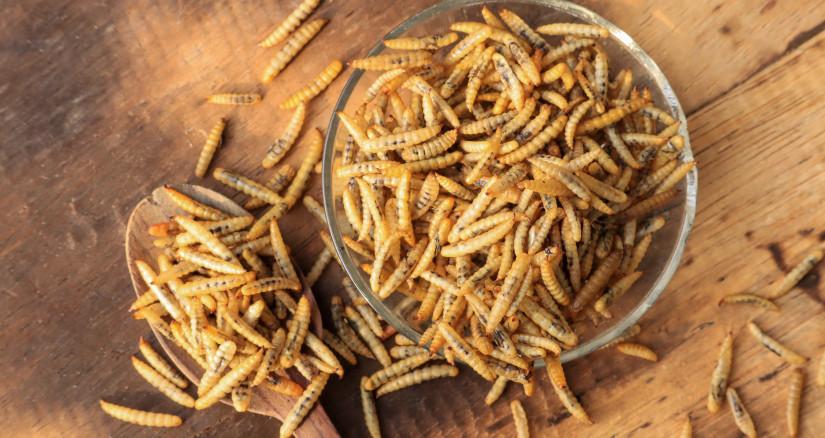 Trends
Trends
5+ MIN
12/03/2024
Black Soldier Fly Larvae as an alternative protein source in pet diets
The use of insects as a protein source has gained considerable popularity in the pet and human food industries as the consumer agenda focuses more heavily on sustainability.3 Insects are commonly consumed as human food in many cultures around the globe.4-6 Of the insects most commonly being produced on a commercial scale, black soldier fly larvae (BSFL) have been given considerable attention, as they are cheap to raise and possess a unique nutritional composition.7,8
The utilization of BSFL as a sustainable protein source in feed for swine, poultry, and aquaculture has been studied extensively, and researchers are beginning to study BSFL in feed for companion animals as well.3,9,10 According to previous studies, the environmental impact of BSFL production is far less than that of conventional livestock production.11,12 Black soldier fly larvae have the unique ability to transform organic waste such as cow manure, sewage sludge, restaurant waste, and fish offal into valuable biofuels such as ethanol and biodiesel, however, the nutritional composition of BSFL will differ depending upon their diet.13,14
Recently, BSFL, as an alternative protein source in pet food, has been the subject of much investigation. Many studies have been done to evaluate the nutrient composition of BSFL, noting a high-quality composition of nutrients.15 Black soldier fly larvae are considered a complete protein for humans, meaning they contain all nine essential amino acids.21 In addition, BSFL has one of the highest amino-acid scores compared to conventional protein sources such as fish meal.16,17On average, BSFL contains approximately 400 grams of crude protein per kilogram of dry matter (DM) and 300 grams of crude fat per kilogram of DM.9,18
A recent study showed similar results when comparing BSFL (36.5% inclusion) and venison as the primary protein source in extruded dog kibble.15 In dogs, acceptability of dry kibble containing BSFL is good, with dogs accepting foods containing up to 20% inclusion rate of BSFL; however, acceptability is lower in cats, with acceptance up to 5% inclusion.19,20
When evaluating the sustainability, nutrient composition, digestibility, and acceptability of protein products to use in pet food, BSFL is comparable to conventional meat products. While adequate studies have shown that BSFL is an acceptable alternative protein source in pet diets, more studies to evaluate processing, digestibility, and palatability would be beneficial.17
By: Ada-Miette Thomas
Source: BSM Partners
References
American Pet Products Association. (n.d.). Industry trends and stats. APPA. https://www.americanpetproducts.org/research-insights/industry-trends-and-stats
Sutton, A., Costa, N.D. 2023. The role of black soldier fly larval protein and fat in companion-animal nutrition: challenges and opportunities from an industry perspective. Animal production science.
Wang, Y. S., Shelomi, M. 2017. Review of black soldier fly (Hermetia illucens) as animal feed and human food. Foods. 6(10):91.
Paul, A., Frederich, M., Megido, R. C., Alabi, T., Malik, P., Uyttenbroeck, R., et al. 2017. Insect fatty acids: A comparison of lipids from three Orthopterans and Tenebrio molitor L. larvae. J. Asia-Pacific Entomology. 20(2):337-340.
Paul, A., Frederich, M., Uyttenbroeck, R., Hatt, S., Malik, P., Lebecque, S., et al. 2016. Grasshoppers as a food source? A review. Biotechnologie, Agronomie, Société et Environnement, 20(AgricultureIsLife).
Paul, A., Frederich, M., Uyttenbroeck, R., Malik, P., Filocco, S., Richel, A., et al. 2016. Nutritional composition and rearing potential of the meadow grasshopper (Chorthippus parallelus Zetterstedt). J. Asia-Pacific Entomology. 19(4):1111-1116.
Star, L., Arsiwalla, T., Molist, F., Leushuis, R., Dalim, M., Paul, A. 2020. Gradual provision of live black soldier fly (Hermetia illucens) larvae to older laying hens: Effect on production performance, egg quality, feather condition and behavior. Anim. 10(2): 216.
Schmitt, E., Belghit, I., Johansen, J., Leushuis, R., Lock, E. J., Melsen, D., et al. 2019. Growth and safety assessment of feed streams for black soldier fly larvae: A case study with aquaculture sludge. Anim. 9(4):189.
Barragan-Fonseca, K.B., Dicke, M., van Loon, J.J. 2017. Nutritional value of the black soldier fly (Hermetia illucens L.) and its suitability as animal feed– A review. J. Insects Food Feed. 3(2):105-120.
Makkar, H. P., Tran, G., Heuzé, V., Ankers, P. 2014. State-of-the-art on use of insects as animal feed. Anim. Feed Sci. Technol. 197:1-33.
Smetana, S., Schmitt, E., Mathys, A. 2019. Sustainable use of Hermetia illucens insect biomass for feed and food: Attributional and consequential life cycle assessment. Res. Conserv. Recylcing. 144:285-296.
Gligorescu, A., Fischer, C.H., Larsen, P.F., Nørgaard, J.V., Heckman, L.H.L. 2020. Production and optimization of Hermetia illucens (L.) larvae reared on food waste and utilized as feed ingredient. Sustain. 12(23):9864.
Van Huis, A., Van Itterbeeck, J., Klunder, H., Mertens, E., Halloran, A., Muir, G., Vantomme, P. 2013. Edible insects: Future prospects for food and feed security (No. 171). Food and Agriculture Organization of the United Nations.
Tomberlin, J.K., Cammack, J.A. 2017. Black soldier fly: Biology and mass production. Insects as food and feed: from production to consumption. Wageningen Academic Publishers, Wageningen, the Bosch, G., Zhang, S., Oonincx, D. G., & Hendriks, W.H. 2014. Protein quality of insects as potential ingredients for dog and cat foods. J. Nutr. Sci. 3(e29):231-246.
Penazzi, L., Schiavone, A., Russo, N., Nery, J., Valle, E., Madrid, J., et al. 2021. In vivo and in vitro digestibility of an extruded complete dog food containing black soldier fly (Hermetia illucens) larvae meal as protein source. Front. Vet. Sci. 8:653411.
Loho, L., Lo, D., Romulo, A. 2023. Amino acid analysis and physiological properties of protein concentrate made from Black Soldier Fly Larvae (Hermetia illucens). In IOP Conference Series: Earth and Environmental Science. 1200(1):012028.
Bosch, G., Swanson, K.S. 2021. Effect of using insects as feed on animals: Pet dogs and cats. J. Insect Food Feed. 7(5):795-805.
Abd El-Wahab, A., Meyer, L., Kölln, M., Chuppava, B., Wilke, V., Visscher, C., Kamphues, J. 2021. Insect larvae meal (Hermetia illucens) as a sustainable protein source of canine food and its impacts on nutrient digestibility and fecal quality. Anim.11(9):2525.
Yamka, R.M., Koutsos, E.A. and McComb, A., 2019. Evaluation of black soldier fly larvae as a protein and fat source in pet foods. Petfood Forum, Kansas City, MI, USA, pp. 8-9.
Paßlack, N., & Zentek, J. (2018). Akzeptanz, Verträglichkeit und scheinbare Nährstoffverdaulichkeit von Alleinfuttermitteln auf Basis von Hermetia-illucens-Larvenmehl bei Katzen [Acceptance, tolerance and apparent nutrient digestibility of complete diets based on larvae meal of Hermetia illucens in cats]. Tierarztliche Praxis. Ausgabe K, Kleintiere/Heimtiere, 46(4), 213–221. https://doi.org/10.15654/TPK-180372
Miron, L., Montevecchi, G., Bruggeman, G., Macavei, L. I., Maistrello, L., Antonelli, A., & Thomas, M. (2023). Functional properties and essential amino acid composition of proteins extracted from black soldier fly larvae reared on canteen leftovers. Innovative Food Science & Emerging Technologies, 103407.
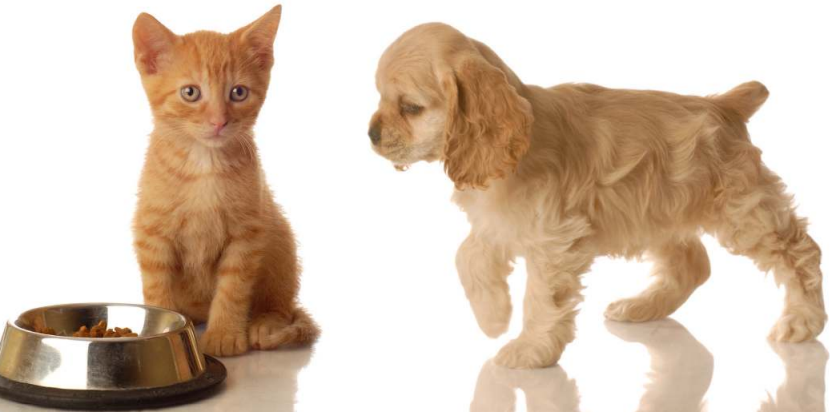 Sanity
Sanity
3+ MIN
11/03/2024
Are Vegetarian Diets for Cats and Dogs Safe?
A Vegetarian Diet for Cats
The cat is an obligate carnivore and has highly exacting nutritional needs, for this reason we advise owners to think very carefully before providing a vegetarian diet for their cats, and to ensure they get advice from a veterinary nutritionist.
There is some commercial 'complete' vegetarian cat food available on the market. If a cat owner is intending to feed one of these products, we would recommend the owner discusses this option with their vet in the context of the individual needs of their cat.
Cats have high requirements for protein and amino acids which their bodies breakdown very rapidly. If resources run low they're unable to reduce the rate of breakdown which makes them particularly sensitive to deficiencies.
The particular importance of taurine (an amino acid exclusively found in animal-based proteins) in cat nutrition is well documented. It is an essential nutrient for cats and deficiency can lead to blindness and/or heart failure. Cats have minimal ability to synthesise sufficient taurine to meet their needs and therefore require a dietary supply which is found exclusively in animal derived materials. Whilst synthetic supplements are available, these can vary in bioavailability and there is no margin for error.
Arachidonic acid (an essential fatty acid) is another example of a nutrient required by cats only available from animal sources, along with preformed vitamin A (retinol) as cats cannot utilise sufficient quantities from the pro-vitamin A of vegetables.
Cats also need to sustain good levels of vitamin B12 found naturally in meat.
A Vegetarian Diet for Dogs
Dogs are omnivores and can adapt to a well-balanced vegetarian diet. There is a wider range of commercially prepared 'complete' vegetarian dog foods available and for the majority of owners this is the safest way to feed a vegetarian diet. Once again, we advise that these feeding options are discussed with the vet or animal nutritionist.
Vegan diets for Pets
Vegan foods (no animal products) should be carefully checked by a vet or animal nutritionist as they may be deficient in arginine, lysine, methionine, tryptophan, taurine, iron, calcium, zinc, vitamin A and some B vitamins2,3. Meticulous attention to detail would be needed to assure nutritional adequacy and palatability.
Home Prepared Vegetarian Diets for Cats and Dogs
Studies have shown that nutritional errors are commonplace in many homemade diets1; providing a nutritionally balanced, homemade vegetarian diet is a complicated task that would require meticulous planning and a specific formulation from a vet or animal nutritionist – particularly for cats. A survey of 86 vegetarian dogs in Germany, Switzerland and Belgium found that over 50% of the dogs were fed diets deficient in protein, essential amino acids, calcium, zinc and vitamins D and B122. Dietary deficiencies can have a significant impact on long term health and well-being.
Source: FEDIAF
1 University of California, Davis School of Veterinary Medicine 'Homemade dog food recipes can be a risky business, study finds' (15 July 2013)
2 A Field Study on the Nutrition of Vegetarian Dogs and Cats in Europe. Jan 1998-Dec 1999. E. Kienzle, R Engelhard.
2 Dwyer JT. Nutritional consequences of vegetarianism. Annual reviews of nutrition 1991: 11: 61-69.
3 McDonald P, Edwards RA, Greenhalgh JFD, et al. Evaulation of foods – protein. In: Animal Nutrition, 5th ed. Harlow (Essex), UK: Longman Scientific and Techincal, 1995.
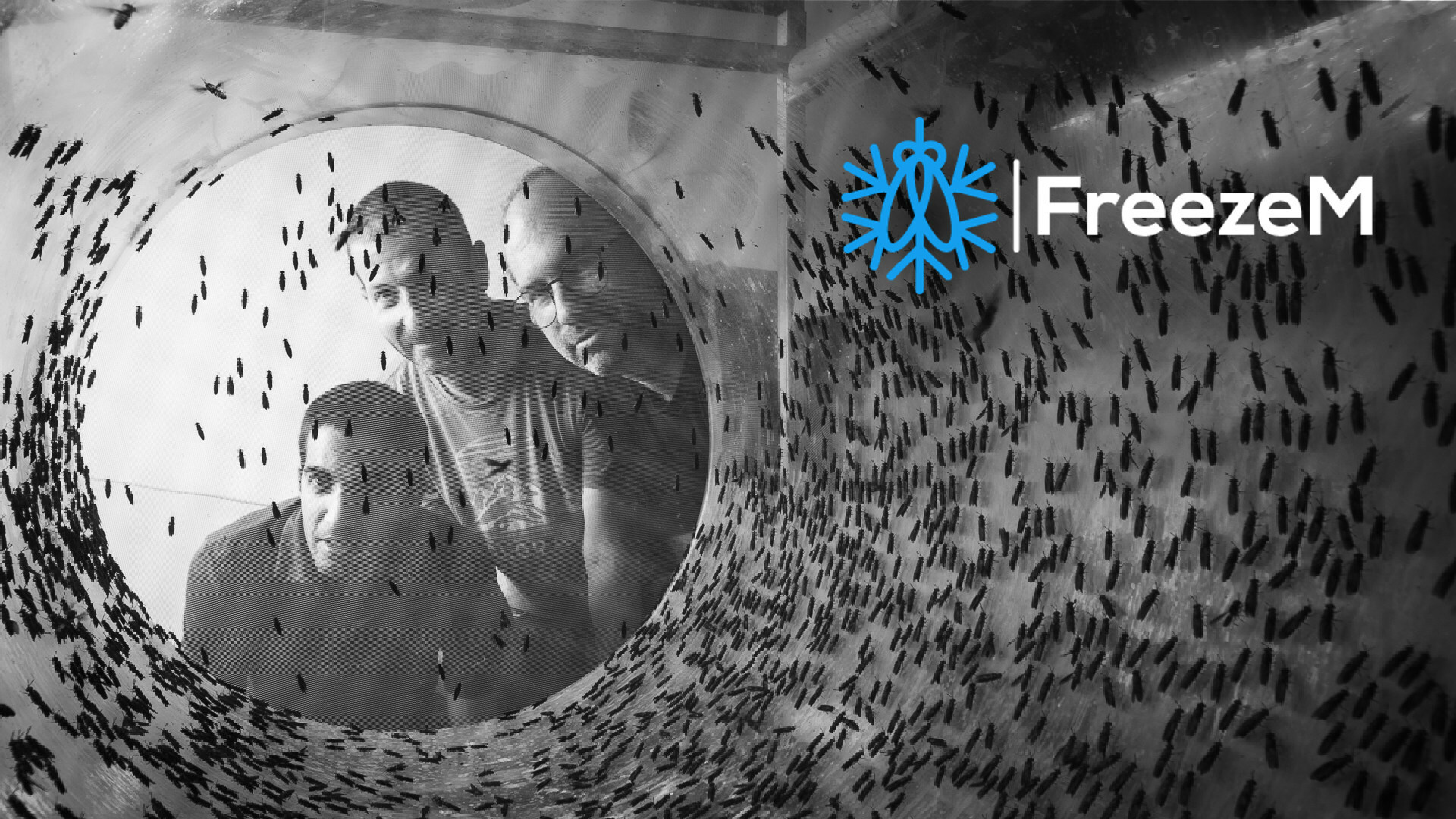 Market Information
Market Information
3+ MIN
05/03/2024
FreezeM raises $14.2M in Series A to accelerate market expansion in the insect protein industry
NAHSHONIM, Israel, Feb. 15, 2024-- FreezeM, an Agri-tech pioneering biotechnology company that offers Breeding-as-a-Service (BaaS) for Black Soldier Fly (BSF) protein factories, announced today the closure of $14.2 million in Series A funding.
The funding round was led by a group of seasoned industrial investors and the prestigious European Innovation Council Fund (EIC Fund), along with FreezeM's existing investors and partners. The funding will be used to accelerate the growth of the company's breeding hubs network and commercialize its novel solutions at scale, accommodating the rapidly increasing market demand.
FreezeM aims to simplify BSF reproduction and increase protein yield through the supply of its PauseM® product to BSF protein producers, tapping an estimated $3.96 billion market by 2033 according to Meticulous Research forecast. This innovation plays a vital role in boosting insect protein production capacity for livestock and pet food while implementing a circular economy, conserving precious global farmland, and reducing ocean depletion.
Traditionally BSF breeding is a major bottleneck in industrial scale insect protein production, requiring unique bio-expertise to tackle inherent colony instabilities and technological gaps. While there are vast off-the-shelf engineering solutions for rearing and processing, breeding challenges can't be addressed by machinery alone. As the insect farming industry matures, it follows a similar trajectory to other established agricultural market segments, moving towards supply chain specialization and segmentation.
PauseM® is developed to overcome the fundamental challenges of insect breeding, thereby giving our customers' competitive edge in the market. By eliminating these industry constraints, PauseM® not only promotes sector growth but also facilitates scaling of the global insect protein industry.
PauseM® is a ready-to-use product, containing life-cycle 'paused' BSF neonates with an extended shelf-life of 14 days and consistent high survival rates of over 90%. PauseM® is shipped to BSF protein facilities worldwide, stored on site and flexibly used according to production needs. This technology paves the way to a new decoupled BSF protein production model, separating the breeding phase from rearing and processing phases for the first time in the insect farming industry. The adoption of PauseM® as an outsourced ongoing breeding supply enables increased protein production efficiency, reduces Opex and Capex and streamlines seamless scalability.
FreezeM takes the breeding hurdle out of the equation, streamlining insect protein production and making it more efficient and accessible from new entrants to veteran market players. The newly established decoupled protein production model marks the first time the breeding phase is separated from the rearing and processing phases in the insect farming industry. The company currently supplies PauseM® globally, catering to small to large-scale BSF protein factories.
"The current funding round will enable FreezeM to embed our technology globally at scale and accelerate the growth of our breeding hubs in Europe and Israel, thereby driving successful commercial expansion. Our technology unleashes the insect market from its shackles and will propel the insect protein market to fulfill its true potential," said Dr. Yuval Gilad, Co-founder and CEO of FreezeM.
About FreezeM
Founded in 2018 as a spin-off from the Weizmann Institute of Science by three institute graduates Yoav Politi, Idan Alyagor and Yuval Gilad. FreezeM's mission is to make insect farming simple and accessible using novel breeding solutions for the emerging BSF farming industry. Since its establishment, the company has developed multiple biotechnological breakthroughs for enhancing sustainable, streamlined insect protein production. FreezeM was awarded several prestigious grants from the European Commission and the Israeli Innovation Authority, and participated in leading innovation consortiums in Europe and Israel.
Source: FreezeM.
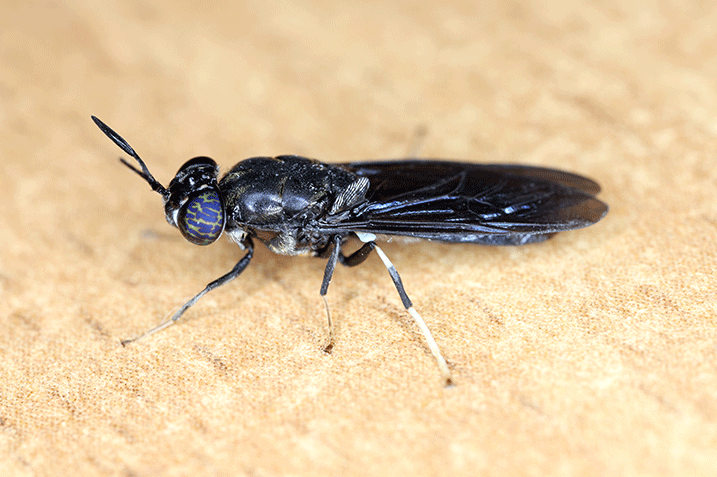 Trends
Trends
3+ MIN
04/03/2024
Grub’s up! Insect protein as pet food
Dog owners: how many times have you seen your pup chase a spider across the carpet and gobble it up? Dogs and cats are happy to eat insects in the wild; now they have the chance to eat them every day. Insect protein is on the rise as an alternative to animal protein in pet food. But is it nutritious enough for your furry friend? Read on to find out more about the rise of insect protein in pet food, its benefits, and how Sciantec can help. How insect protein in pet food is taking wing In 2019, the British Veterinary Association (BVA) publicly endorsed the use of insect protein in pet foods. Some insects, such as crickets, grasshoppers, and locusts, provide more protein than even meat and chicken eggs. However, research on how nutritious insects are is limited, and there are plenty of barriers to overcome before insect protein in pet food is widely accepted. The biggest barrier is legislation because processed animal protein in feed has been banned since the 90s. However, the EU is gradually starting to relax legislation. In May 2017, the EU partially lifted the feed ban rules regarding the use of insect processed animal proteins to be used in aquafeed. In September 2021, they could also be fed to poultry and pigs. At the end of last year, they also authorised insect waste (frass) for use in fertiliser to spread on our crops. There is also an EU non-for-profit organisation called the IPIFF: the International Platform of Insects for Food and Feed. This trade body represents 80+ members involved in insect feed and food, such as insect farms, on a legislative level. With these hurdles starting to be cleared, experts suggest that the market is now set to increase exponentially in less than 10 years. Some even project production to soar from about 10,000 metric tonnes today to 500,000 by 2030. The buzz around insect protein Now that the safety of insect protein seems to be more secure than before, we must ask if it is nutritious enough for our pets. Insects like crickets, mealworms, and black soldier flies offer stacks of rich, healthy proteins for your animal's diet. Farmed species can also contain high fat/oil content, mineral content, and vitamin levels, and have fantastic amino acid profiling. There is also some evidence that insects accumulate low quantities of heavy metals, mycotoxins, and pesticides. So, we might find the idea of eating creepy crawlies unpleasant, but the potential nutritional value of insect protein for animal feed is clear. To be sure, producers must undertake analysis from a specialist animal feed laboratory. How Sciantec can help We service several customers who use insect protein in pet food products. Nutritional analysis can include amino acid and fatty acid profiling, species specific energy calculations, crude protein, total oil, moisture and dry matter, crude ash, and more, helping our customers to ensure the safety and quality of their products. We also test for undesirable substances and contaminants to help producers remain compliant and safeguard public and animal health. With over 30 years' expertise in animal feed analysis and our extensive experience in the agriculture sector, we work closely with customers to undertake specialist research like determining the nutritional value of insect protein. We also deliver microbiology services to check feed and ingredients for Salmonella, E. coli, and other Enterobacteriaceae and help keep animals, livestock, and humans safe from disease. If you want to undertake nutritional or undesirables analysis, or you have a specialist project that we can help you with, contact us to discuss your requirements. Source: Cawood.
 Market Information
Market Information
3+ MIN
01/03/2024
Kemin Nutrisurance opens first Innovation Center and second Spray Dryer in South America
VARGEÃO, Brazil , Feb. 26, 2024 - Kemin Industries, a global ingredient manufacturer that strives to sustainably transform the quality of life every day for 80 percent of the world with its products and services, recently opened an Innovation Center and second spray-drying facility at its regional headquarters in Vargeão, Santa Catarina, Brazil, making the Kemin Nutrisurance location the largest pet food manufacturing plant in Latin America by volume capacity for producing dry and liquid palatants.
Kemin Nutrisurance, the pet food and rendering technologies business unit of Kemin Industries, has been expanding its Research and Exploration Services to enhance co-creation with customers to support them at every stage of pet food production. With its first Innovation Center in Brazil, the business unit can provide fast and accurate solutions for current and future palatant and protein customers in South America.
"Our first Innovation Center in South America will greatly strengthen our Research and Exploration Services in the region," said V Lucatelli, General Manager – South America, Kemin Nutrisurance. "We can now offer customers a local laboratory to improve and evaluate the performance of current and future products, as well as improve cost efficiency, to bring top innovations at the speed the pet food industry demands."
The Innovation Center and second spray dryer are part of the global business unit's continued growth in South America and the Latin American market. In 2008, Kemin purchased the property and has since invested in renewable energy sources while still increasing its capacity and capabilities, including Kemin Nutrisurance's Research and Exploration Services. This new expansion allows the Vargeão facility to not only supply the South American market, but also support Kemin Nutrisurance's palatant needs in other regions, such as Asia and Europe.
"With greater emphasis on Research and Development (R&D) support for our customers, we can utilize our data and analytics to fine-tune our products and services to find fast and accurate solutions that better serve the market," said Dr. Jason Shelton, Global Vice President – R&D, Kemin Nutrisurance. "By bringing our Research and Exploration Services to the regional level through an Innovation Center, we can create a local customer experience that focuses on specific needs at the speed required by a rapidly evolving industry."
The Innovation Center and spray drying facility were recently inaugurated during a ribbon cutting with Kemin Nutrisurance President Kimberly Nelson and Kemin Industries Worldwide Group President David Raveyre. Kemin Nutrisurance's newest additions at the South America headquarters are now open with expanded solutions for customers in the region's pet food industry.
About Kemin Industries
Kemin Industries is a global ingredient manufacturer that strives to sustainably transform the quality of life every day for 80 percent of the world with its products and services. The company supplies over 500 specialty ingredients for human and animal health and nutrition, pet food, aquaculture, nutraceutical, food technologies, crop technologies, textile, biofuel, and animal vaccine industries.
For over half a century, Kemin has been dedicated to using applied science to address industry challenges and offer product solutions to customers in more than 120 countries. Kemin provides ingredients to feed a growing population with its commitment to the quality, safety and efficacy of food, feed, and health-related products.
Established in 1961, Kemin is a privately held, family-owned-and-operated company with more than 3,000 global employees and operations in 90 countries, including manufacturing facilities in Belgium, Brazil, China, Egypt, India, Italy, San Marino, Singapore, South Africa, and the United States.
Source: Kemin Industries.
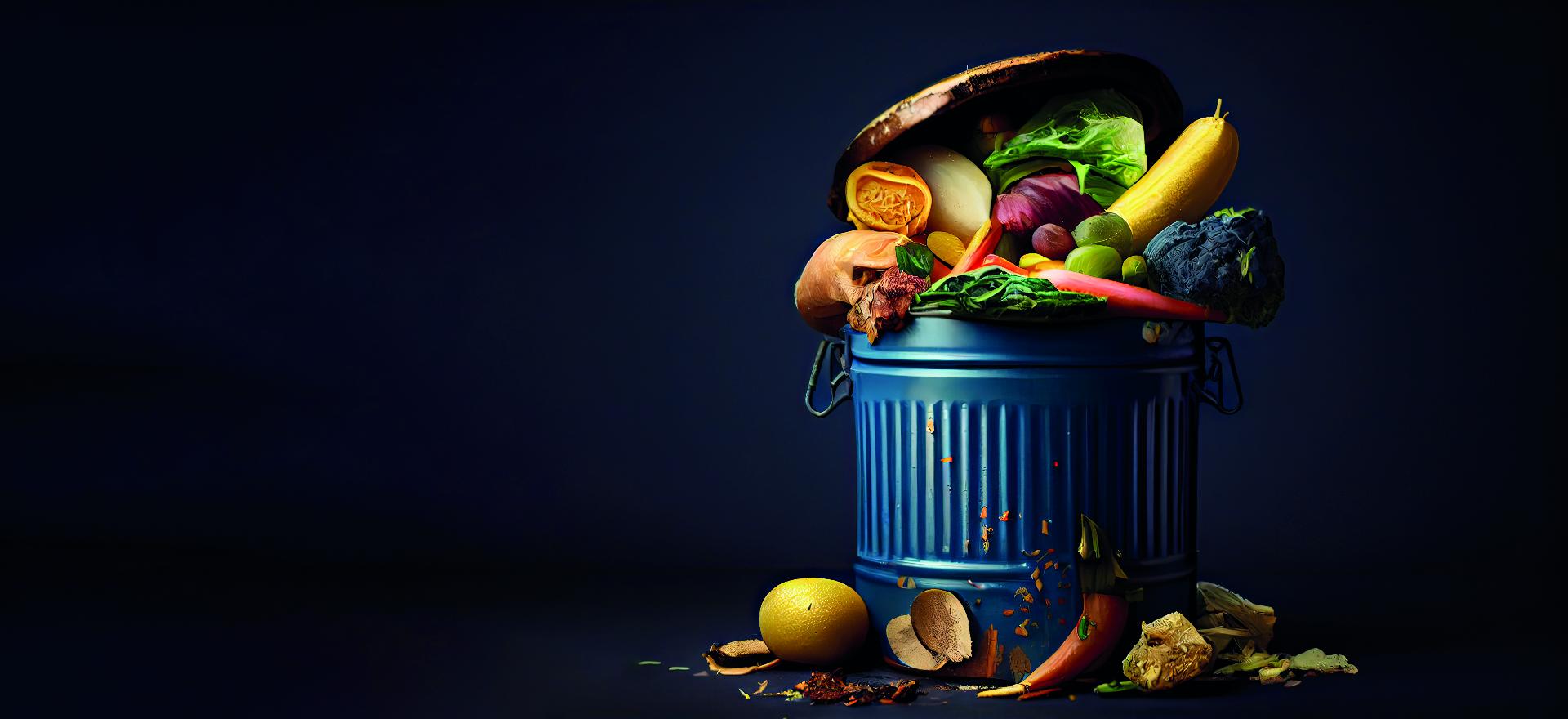 Trends
Trends
4+ MIN
29/02/2024
Por María Candelaria Carbajo
Upcycling in traditional products
Faced with these numbers, the upcycling technique becomes increasingly relevant in industries such as the food industry, which absolutely needs to take measures regarding raw materials and waste treatment.
What is upcycling?
Upcycling, known as upcycling or creative reuse, consists of the use of products, waste materials, or waste to manufacture new ingredients or products of higher quality, ecological, and economic value. Thus, through recycling, healthy, and nutritious foods and ingredients are prevented from becoming waste, giving them a second chance to be consumed.
Ingredients that can be recycled help pet food manufacturers improve their efforts to build sustainability. The products of this type most used in the industry have been, at least until now, those made from extracted meat by-products. Although converting meat by-products into protein-rich sources instead of throwing them away is something positive, nowadays, the most innovative ingredients and materials are those capturing the attention of pet food consumers concerned about the planet's sustainability. Many certified recycled elements can be easily integrated into any recipe, giving the new product a competitive advantage in sustainability. The main challenge is that these usually have the same nutritional properties as other more conventional, but not the same appearance. To work with them, it is essential that the processing and control systems take these variations into account, as well as formula design. Rescuing these ingredients not only helps eliminate food waste throughout the supply chain but also reduces demand for 'virgin' crops.
But, when we talk about the inclusion of new ingredients and by-products, we must also talk about education and awareness. In the case of pet food and its relationship with cereal ingredients such as wheat, corn, and rice, commonly used as sources of carbohydrates, there is debate about how much of these nutrients are necessary for pet feeding. Although the pet nutrition industry struggles to eradicate misconceptions about these ingredients, the challenge still exists and, consequently, affects the use of these new proposals in food formulas.
The truth is that recycled products prevent nearly one billion pounds of food waste worldwide each year, and this number may continue to grow as consumer demand for recycled products increases, which, Obviously, will be achieved through information and awareness.
Currently, you don't have to look hard to find proposals from entrepreneurs or small manufacturers who, instead of working with large suppliers and processing plants, choose local farms and suppliers as they trust the quality of their raw materials, especially when we talk about those considered waste or by-products.
The good point is that most of these elements can be easily integrated into any recipe, making a product (and its entire chain) more sustainable by reducing greenhouse gasses and using waste from other industries or chains in pet food formulas without risking quality, as may be the case of pumpkins used for decoration at Halloween or apple pulp from a cider factory.
According to the UFA (Food Upcycling Association):
'Recycled foods use ingredients that otherwise would not have reached consumption. They are sourced and produced through verifiable supply chains and have a positive impact on the environment.'
This entity has already certified more than 200 ingredients as recyclable in the food sector, many of which have applications in pet food and treats.
Examples of materials and ingredients used in upcycling:
Sweet potatoes or other types of tubers that come from local organic farms and that have rare shapes that are not as aesthetic as those hypermarket chains seek to sell.
Ends and pieces of meat and seafood that have not been sold in the supermarket.
Fruits that, like tubers, are bruised or with amorphous shapes.
Alternative proteins such as cricket, spirulina, or silver copi, an overpopulated fish.
Used barley from local breweries.
Eggshells.
Salmon oil, produced from fresh salmon trimmings, such as the head, spine, and skin.
By-products from the production of french fries or potato starch are applied in formulas to gain texture, shape croquettes, and improve digestion.
Conclusion
Recycled ingredients have revolutionized the pet nutrition landscape as a way to add value to elements that would otherwise go to waste while also supporting pet health. Various agricultural products and wheat-based ingredients, including blueberries, sweet potatoes, flaxseeds, carrots, and various flours, are currently used in the North American pet food and treat industry to capitalize on sustainability as a consumer priority.
Converting by-products into pet food ingredients reduces food waste and makes more efficient use of the resources needed to produce human food. Renaming these recycled products could help pet owners accept them.
Source: All Pet Food Magazine.
 Trends
Trends
7+ MIN
28/02/2024
The unexpected new ways pet brans embracing sustainability
Consumers are interested in purchasing more sustainable products and "remain concerned about climate change and related sustainability issues," according to the National Retail Federation (NRF). Pet retailers can stay in step with customers by offering an array of products that recognize these concerns.
Claudia Loomis, president of CB Pet Market, a small chain of pet stores in New Jersey, said that while her shoppers are showing more interest in eco-friendly and sustainable products, they are looking for a range of product attributes.
"Sustainably sourced as a standalone feature will not be enough to sell the product," Loomis said. "For example, one of our most popular-selling dog chews are antlers. These are sustainably sourced as they are naturally shed by deer, elk or moose. But they are also a proven long-lasting chew with some nutritional value, making it a product pet parents can feel good about purchasing on several levels."
Christina Reville, marketing coordinator for Healthy Pet, which operates production and distribution in Jesup, Ga., said that the company creates small-pet bedding and cat litter from sustainably sourced, responsibly rescued natural plant fiber. Reville said it's cleaner and healthier for the entire family—two factors that are important to pet owners.
"Every year, Healthy Pet diverts millions of pounds of unused wood, pulp and paper remnants from landfills," she said. "These upcycled materials are crafted into our plant-based pet products. Plus, all finished product is biodegradable, making them better for pets, home and planet."
In 2023, Healthy Pet began producing its Ökocat natural cat litter in a 100-percent recyclable paper bag after consumer research revealed that the natural litter and Ökocat consumer has a strong desire for 100-percent recyclable packaging.
"Starting in October of 2023, the current box packaging began transitioning to new double-wall paper bags with a recyclable handle to directly answer the requests of our consumer," Reville explained. "Customers can expect to see the bags on shelves in 2024."
According to Jane Wasley, head of marketing for Healthy Pet, the consumer demand for eco-friendly litter packaging isn't being addressed by very many companies.
"Very few natural brands are meeting natural litter consumers' wants on packaging, with many still being in heavy non-recyclable, non-biodegradable plastic bags or poly pouches," Wasley said.
Spencer Williams, CEO of West Paw, a pet treats and accessories manufacturer in Bozeman, Mont., said that the company has recycled almost 150,000 pounds of dog toys and spun more than 16 million water bottles into dog beds and toy stuffing. West Paw's Seaflex toy line reclaims ocean-bound plastic. In addition, the company's freeze-dried and air-dried dog treats are crafted with humanely raised and sustainably sourced ingredients and made in the USA.
"We think not only about the finished product, but also about the materials, the whole supply chain and how it's made," Williams said. "We continue to bring new innovation to our treat line with a growing focus on regenerative beef production in Montana. New products will be coming out throughout 2024 that we're very excited about at West Paw. Many will continue our focus on regenerative practices that capture carbon, naturally sequestering it back into the soils."
Jason Ast, co-owner of Just Dog People, a pet store in Garner, N.C., said that he and his customers appreciate how West Paw recycles old products to create new products "ready to be enjoyed again."
"We also like Paw 5," Ast continued. "They say their snuffle mat removes over two pounds of textile waste from landfills. They also hire women in Ghana, teach them skills and help elevate their lives."
Larry Wright, CEO of The Green Pet Shop, a manufacturer of pet accessories in Deerfield, Ill., said that all of the company's products have some type of eco-friendly component to them.
"Our mission statement is to manufacture eco-friendly products that solve problems, are unique, and that help pets, their pet parents and the planet, at competitive prices as compared to non-eco-friendly products," Wright said. "At our company, we are all aware of the issues involving climate change and the danger it poses to our planet and future generations. We all take our responsibility to the planet seriously and are all involved in designing, testing and bringing these products to market."
For 2024, Wright said The Green Pet Shop is introducing a line of leashes and collars that will piggyback off of the success of the company's Pooie Vuiton waste bag line. The new line, Bonejour by Green Pet, will be made from recycled canvas.
Austin and Kat, a Seattle-based manufacturer of pet supplements, is also committed to sustainability in producing its chews, oils and toppers.
"Our approach involves selecting farms, suppliers and producers that uphold the highest ethical standards, ensuring both quality and sustainability," explained founder Kat Donatello. "We're passionate about running our business in environmentally friendly ways, from sourcing eco-friendly packaging to reducing our carbon footprint at our Seattle Makery. We've also embraced sustainable manufacturing, considering the full life cycle of our products from raw materials to end-of-life, to minimize environmental impact."
CONSUMER PREFERENCES
Interest in sustainability may be heightened in certain categories.
Loomis said that sustainability in "anything the pet eats" gets the most notice at CB Pet Market. This includes pet treats and food.
"Customers naturally want the most wholesome products for anything being consumed," she said. "We would like to see more supplements being made from whole and natural ingredients. We are beginning to see transparency in sourcing ingredients in the supplement category, but some of the traditional supplement brands we carry are [synthetic]-based vitamins and minerals. I would like to see more natural supplements, like green-lipped mussels as a natural source of glucosamine and chondroitin. Again, supplements are ingested by our pets, so it is good to keep them clean, wholesome and as bioavailable as possible."
Jenna Harrison, store manager for NorthPoint Pets & Company, a pet store in Cheshire, Conn., said that the store's biggest request for eco-friendly products is in home-compostable poop bags.
"I do wish there were more home-compostable—not biodegradable—options available," she said. "People are looking for creative ways to reduce their waste output and environmental impact, and pet care is no exception."
Ast agreed and said that poop bags are the eco-friendly option they get asked about most at Just Dog People.
"I would say 90 percent of the people who shop for poop bags prefer 'quick biodegradable' options," he said.
Reville said that Healthy Pet's research has revealed consumers want a "healthier home," which affects their buying habits across many categories—and products.
"Whether it's buying organic pet products, nontoxic and plant-based cleaning products or paraben-free beauty products, more and more consumers are looking for products that help them live a cleaner, healthier lifestyle, even when it comes to their pets," she said. "We continually educate our retailers and consumers about the importance of switching to natural, sustainable products and the impact that it has on the planet."
Retailers can play a valuable role in helping to alert customers to eco-conscious options, Loomis noted.
"Brands that tout ethically sourced, fair trade and sustainably sourced are generally a bit more pricey than other brands, and often the call-out on the product packaging is not prominent enough to have a customer notice it on their own," Loomis said. "So, the role of the sales associate is important. The associates need to be knowledgeable about the products so they can point out the different features. When comparing two similarly formulated dog foods, for instance, and trying to help the customer make their choice, it is helpful to call out if the protein source in the food is sustainably or ethically sourced; that could be the differentiator that tips the scales to that brand for the customer."
But not all efforts will pay off. Sometimes it's merely a matter of the interest level in a retailer's specific area. Ast admitted that at Just Dog People, they made a concerted effort to push a specific eco-friendly, sustainable dog food choice this past year, giving it prominent, upfront positioning and valuable space on the floor. They also created an attractive display, gave away free samples and ran a contest—all to sell only one bag of dog food.
"This says more about the demographic makeup of our customer base than it does the quality of the product," he said. "From my experience, the interest in sustainability and eco-friendliness differs greatly depending on where you are in the United States. We are based outside of Raleigh, a large city. I believe if you were to ask dog owners in downtown Raleigh what they thought of eco-friendly dog products, they would have a range of knowledge and opinions. But outside of the city, the focus on eco-friendliness and sustainability simply may not be as big a concern."
Yet that doesn't mean attitudes won't evolve.
"Even so, the pet industry has been a hotbed for eco-friendly and sustainable innovation, so we are likely to see interest continue to grow," Ast added.
By: Lindsey Getz.
Source: Pet Product News.
 Market Information
Market Information
2+ MIN
27/02/2024
AFB International announces new Vice President of Global Research and Development
ST. CHARLES, Missouri, Feb. 12, 2024 – AFB International, a subsidiary of Ensign-Bickford Industries, named Dr. Michael Ceddia as Vice President, Global Research & Development. Dr. Ceddia will advance AFB's scientific leadership, strategic direction, and science and technology initiatives. Together, these capabilities will further discover and develop companion animal palatability to help AFB improve customers' performance and achieve their business needs.
In addition to Science & Technology, Dr. Ceddia will also lead Global Regulatory, Quality, Project Management, and Technical Insights. Prior to AFB, Dr. Ceddia has held a variety of Executive Leadership roles within Research & Development in consumer products, pet food, nutritional, and pharmaceutical companies.
'Mike brings great leadership experience and strategic customer focus. We are excited for him to join AFB and we look forward to the advancement of innovation, science-based solutions, and technical services to better partner with our customers,' said Dale Spence, Interim President, AFB International.
'I'm excited to have the opportunity to be a part of the AFB Global R&D Team,' said Dr. Ceddia. 'I look forward to helping the company expand our new innovation and new product development while continuing to deliver a high level of technical service to our customers. I am eager to bring my knowledge and experience to the team and help drive the company's ongoing growth. With AFB International's commitment to innovation and excellence, I am confident that we will continue to achieve great success together.'
About AFB International
AFB International was founded in 1986 in St. Louis, Missouri, USA with a vision to create the best palatants and make pet food taste great. Today we are an international company with resource centers and production facilities designed to service pet food manufacturers across the world. Our portfolio of palatants are formulated to deliver optimal performance for each customer's unique needs.
About Ensign-Bickford Industries
Ensign-Bickford Industries, Inc. (EBI), founded in 1836, is a privately-owned high technology conglomerate focused in space & defense, pet food science, and biotechnology. They participate in businesses that are relevant to the future of the world and have multigenerational growth prospects.
Source: AFB International.
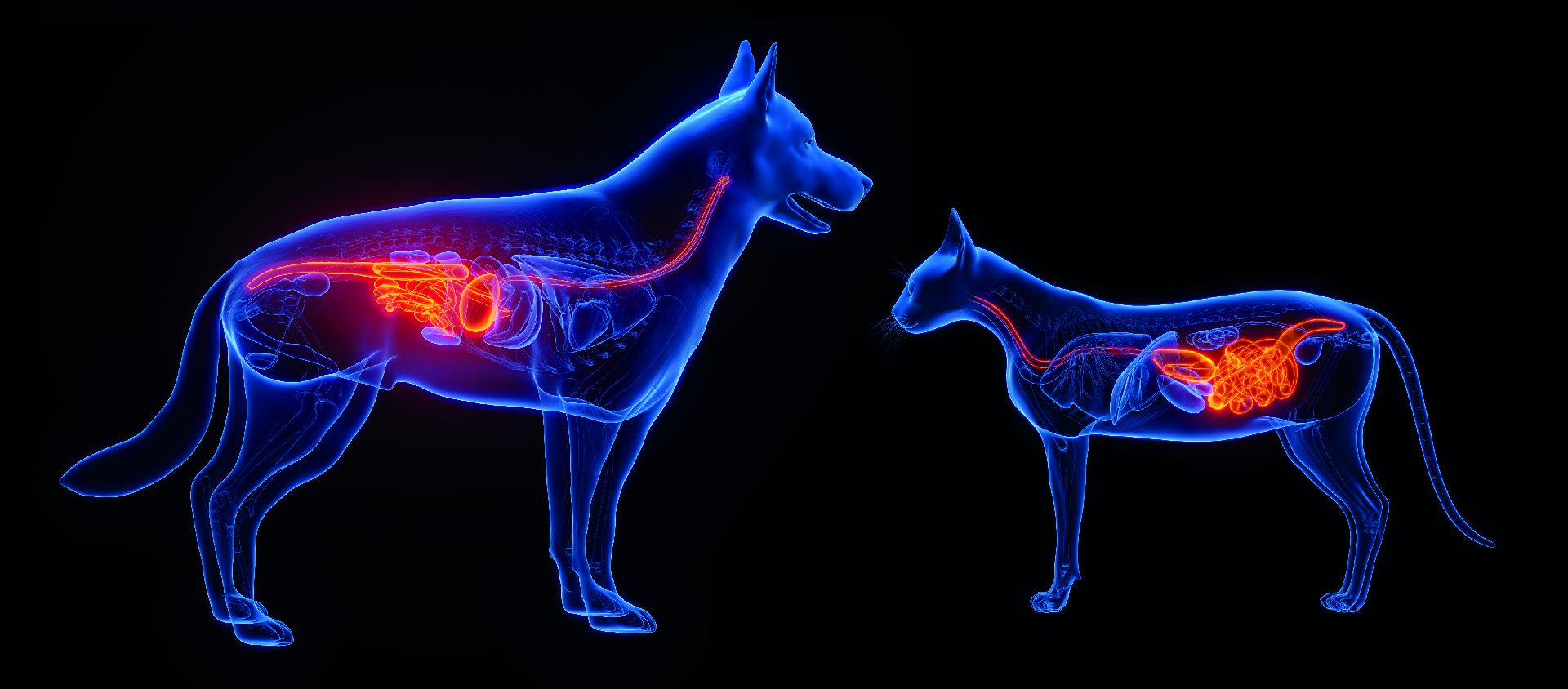 Laboratory
Laboratory
4+ MIN
27/02/2024
Por Ludmila Barbi T. Bomcompagni
Two essential parameters for pet food launching
The fierce competition in the pet food market not only highlights the need for differentiation and excellence in pet food formulation but also emphasizes the importance of validating their effectiveness. Carrying out digestibility tests and fecal score evaluation is one of the crucial methods for evaluating the nutritional pet food quality.
Two essential parameters for pet food launching
Digestibility test
The digestibility test is a crucial tool in evaluating the efficiency with which animals use and absorb food nutrients. This method provides a deep understanding of the digestion and absorption capacity of essential nutrients, which is essential for optimizing diet formulations and ensuring adequate nutrition for living beings. By analyzing the digestibility rate of various components present in food, such as proteins, fats, and starch, the digestibility test contributes significantly to the development of more efficient and sustainable feeding strategies, benefiting pet food products.
Fecal score evaluation
Assessment of fecal score in dogs and cats is a practical and valuable method for monitoring the digestibility of food consumed by these animals. The fecal score refers to the consistency and appearance of feces, being a visual indication of gastrointestinal health and digestive efficiency.
This method involves assigning an appropriate score to stool, usually on a scale from 1 to 5, based on characteristics such as consistency, color, and shape.
When applied to food digestibility studies for dogs and cats, fecal score plays a crucial role. Well-formed stools with adequate consistency indicate good nutrient absorption in the gastrointestinal tract. On the other hand, excessively soft stools, diarrhea, or other abnormalities can be attributed to poor diet digestibility.
Fecal score assessment is often performed in experimental feeding studies in which animals are subjected to different diets. By comparing fecal scores over time, researchers can infer the relative digestibility of different food ingredients or formulations. Diets that result in better-formed and more consistent stools generally indicate better use of food nutrients.
Visual examination of the fecal score can complement the assessment of digestibility. This approach provides a more comprehensive understanding of the impact of food on the gastrointestinal health of dogs and cats, allowing adjustments to formulations to optimize nutrition and digestibility, thereby promoting pet health and well-being.
Evaluating these parameters before launching a pet food product onto the market can give you advantages in comparison with competitors, evaluating whether the processing was done correctly, and identifying in time the need for changes in formulations.
A demonstration in practice would be excess carbohydrates in the diet, for example, which leads to accentuated lactic fermentation, and the feces appear pasty with a light color and acidic smell (without a rotten smell). The same occurs when the feed is poorly processed. Normally, to manufacture dry food, a process called extrusion is used, which consists of applying steam and pressure to a crumbled mass, forming those granules that we technically call 'kibbles.' In this process, starch is essential for making the feed expand. However, if it does not undergo good cooking (or gelatinization) there is a risk of causing osmotic diarrhea in the animal fed with the feed in question. (Saad et al., 2014).
The use of ingredients with lower digestibility directly impacts the fecal score. Ingredients such as soybean meal, widely used in standard or economical pet food manufacturing, contain 20% non-starch polysaccharides (NSP). Soluble PNAs can reduce the digestibility of nutrients and energy in the diet due to the increase in the viscosity of the gastrointestinal tract (GIT) and the reduction in food passage time, making it difficult for digestive enzymes to access the food bolus and interfering with diffusion and transport of nutrients, resulting in loose stools and large quantities.
To minimize the adverse effects of ingredients with less digestibility, their use can be restricted to small inclusions. Otherwise, additives, such as enzymes or adsorbents, can be used. In the case of diets with raw materials rich in NSP and its influence on the fecal characteristics of dogs and cats, for example, the inclusion of a zeolite-type adsorbent additive adjusts the diet fecal score, since this additive, when passing inert through the GIT, adsorbs water and gases and reduces the elimination of ammonia, which improves the fecal characteristics and odors of animals.
The animal's fecal score after consuming a feed plays a significant role in consumer satisfaction and can directly influence the repurchase decision. Thus, the digestibility and consistency of the fecal score reinforce consumer confidence in the product. If the food provides healthy and regular digestion, owners tend to associate this quality with the brand, thus strengthening customer loyalty.
Brand trust is crucial for repurchase, as consumers look for products that consistently meet expectations in such a competitive market.
 Market Information
Market Information
2+ MIN
26/02/2024
GEA achieves key milestone: Science Based Targets initiative (SBTi) validates 2040 net-zero target
'We are proud of the validation by the SBTi,' said CEO Stefan Klebert. 'This shows that we are taking a pioneering role in climate action, because our net-zero pathway is not just ambitious but also in line with latest climate science.'
'The SBTi validation of our net-zero target puts GEA at the forefront of the mechanical engineering sector,' says Chief Sustainability Officer Dr. Nadine Sterley. 'To achieve our climate targets, we have drawn up a comprehensive Climate Transition Plan 2040. This sets out how we will further accelerate the transformation of our operations, our product portfolio and our supply chain.'
GEA's Climate Transition Plan 2040 specifies timings, the measures to be implemented as well the investments needed to achieve the net-zero target. The detailed Climate Transition Plan will be presented in March 2024. At the next Annual General Meeting on April 30, 2024, GEA plans to hold an advisory vote by shareholders on the Climate Transition Plan 2040 – the first of its kind within the DAX Index family of companies.
"This shows that we are taking a pioneering role in climate action, because our net-zero pathway is not just ambitious but also in line with latest climate science."- Stefan Klebert, CEO
GEA Climate targets
In December 2023, GEA announced its upgraded climate targets.
Short-term target 2026:
Reduction in GHG emissions from our own operations (Scope 1 and 2) by 60 percent by 2026. This target was originally set for 2030.
Medium-term targets for 2030:
Reduction in GHG emissions from our own operations (Scope 1 and 2) by 80 percent (previously: 60 percent reduction) by 2030. Reduction in product related GHG emissions (Scope 3) by 27.5 percent (previously: 18 percent reduction) by 2030.
Long-term target 2040: net zero.
Source: GEA.
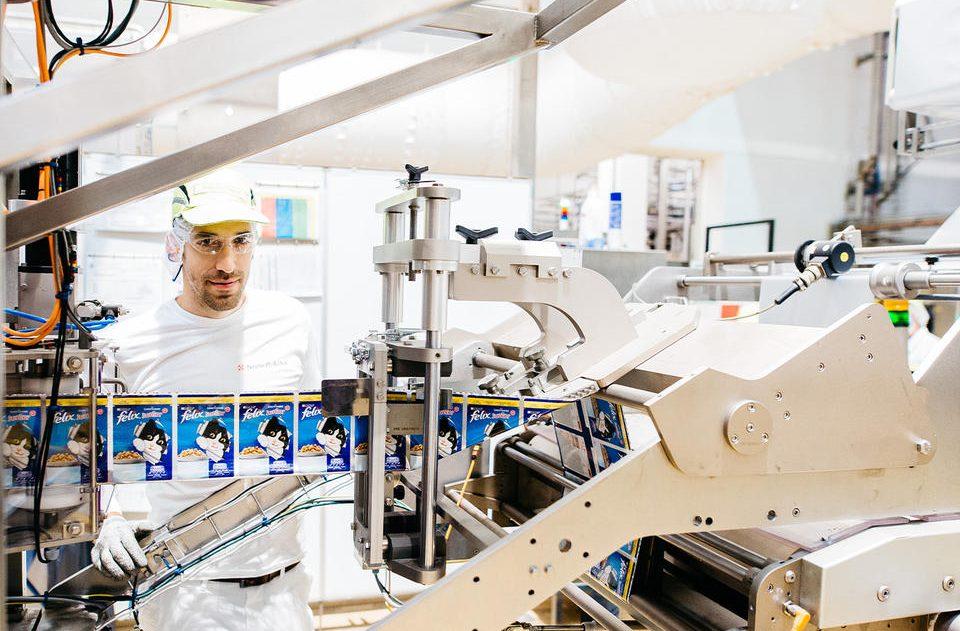 Manufacturers
Manufacturers
3+ MIN
26/02/2024
Swiss giant Nestlé to upgrade its Pet Food plant in Bük with a huge investment
The minister said that the Swiss-based food company will set up a new production unit and build two new automatic production lines at its site in Bük, where "it will be able to produce 500,000 tons of pet food a year from 2025, with 85 percent of these products being exported". The HUF 55 billion investment is expected to create 130 new jobs. Although the company will not receive government financial support, the state will provide the necessary infrastructure improvements, such as modernizing the road and water networks. The project is an important part of Nestlé Hungária's overall five-year development period from 2020 to 2025, which will see investments worth a total of HUF 300 billion (EUR 771 million), creating around 600 new jobs, the politician stressed. Péter Szijjártó noted that in today's uncertain times, reliable partnerships are becoming increasingly important, and this is how the cooperation between Hungary and Nestlé can be characterized, "as the company has made a major contribution to the economic development of Hungary over the past three decades". He said that the Swiss company, with 344 factories in 77 countries around the world, also makes sure that its employees are proficient in the latest technologies, and its training program for this purpose has been supported by the government with HUF 193 million (EUR 495,929). The minister emphasized that the food industry is one of the most modern sectors, as competitiveness calls for continuous innovation in the face of increasingly stringent health, quality, and food safety requirements. Accordingly, the company has contributed not only to the quantitative growth of the Hungarian economy, but also to its qualitative development, as it has always brought state-of-the-art investments and continuously modernized its production. He also pointed out that "the factory in Bük buys more than half of the raw materials it uses from domestic suppliers, thereby benefitting Hungarian small and medium-sized enterprises". Nestlé's Purina factory in Bük. Photo via Facebook/Nestlé. Szijjártó stressed that the investment will further strengthen the domestic food industry, which has not only been able to maintain its operations despite the crisis, but has also consistently set new records. He added that this is evidenced by the fact that the sector's production value was HUF 3,800 billion (EUR 9.7 billion) in 2020, compared to HUF 6,500 billion (EUR 16.7 billion) last year. He pointed out that over the past ten years, the sector has seen 72 major investments worth HUF 1,000 billion (EUR 2.5 billion). Finally, he touched on Hungarian-Swiss economic relations, pointing out that 900 Swiss companies employ more than 30,000 people in Hungary. 'And bilateral relations have always been based on mutual respect, and there is no open issue of dispute in our relations,' he highlighted. The Managing Director of Nestlé Hungária also spoke at the press conference. Péter Noszek underlined that this is the largest food industry investment in Hungary that will more than double the plant's production capacity from nearly 200,000 tons in 2019, to 500,000 tons from 2025. Source: Hungary Today.
 Manufacturing Process
Manufacturing Process
4+ MIN
23/02/2024
Odor control technologies comparison
Biofilter Technology
Process air, which contains an annoying odor, is treated using a filter material, normally woodchips, and eliminated by microorganisms located therein, and can reduce various compounds such as sulfides, ammonia, and amines when present in low concentrations. Then, the clean air is released into the atmosphere, leaving the residual drainage (nitrates and sulfides) as a contaminant that must necessarily be treated, because, otherwise, they continue to cause negative odors.
This system can treat flows of 1,000 to 50,000 m3/h, and requires water for its operation and a large area for its implementation, using little electrical energy. To avoid damaging the filter material, periodic maintenance should be considered. When it comes to processing air with a high dust content, it is mandatory and necessary to treat it, for example, using a gas scrubber.
It is considered a good technology due to its cost/efficiency ratio, obtaining results with up to 85% of odors eliminated. Regarding investment costs, and even though they may vary by brand, manufacturer, or model, those generally range between USD 700,000 and USD 1,000,000.
Ozone and UV Light Treatment Technology
Airflow, which must be less than 20,000 m3/h, first passes through the UV lights, where the ammonia, sulfides, and amines are decomposed, and then the remaining compounds are broken down with catalysts by injecting ozone (O3).
Removing dust from the air during the process is crucial as it will damage the effectiveness of the UV light. That is, highly contaminated air can considerably affect the efficiency of the system due to the flow density.
On the other hand, it uses electrical energy for its operation, and the air must either not exceed 60°C or the humidity be greater than 85%. This treatment allows good results, reaching levels of 70 to 90%. In this case, investment costs are considered between USD 200,000 and USD 400,000, with high annual operating costs.
Non-thermal Plasma (NTP) Technology
Technology capable of treating flows ranging from 5,000 m3/h to 250,000 m3/h depends on the system: in the case of direct NTP, normally 20,000 m3/h can be treated, but it could be up to 250,000 m3/h with indirect NTP. These devices use ambient air to generate free or active oxygen (O1), which has a high oxidation power with the molecules that contain the annoying odor. To obtain them, the air must pass through a stage of filters to rid them of impurities and then go through the cabinet with non-thermal plasma modules, where the dissociation of the molecules is achieved, and the aforementioned oxygen radicals are obtained. These are injected into the outlet duct where the annoying odors come from, and in just 1 second, the odor molecules react and oxidize, becoming imperceptible to our noses.
Unlike other technologies, non-thermal plasma does not use water or chemicals for its operation, so it does not generate a secondary contaminated by-product. It only requires a minimum of electrical energy. In addition to the large flow rates it can manage, there is no restriction on the humidity or temperature that the process air can have.
Optimal results are achieved, reaching up to 95% of odors eliminated.
These systems easily adapt to existing installations, thanks to their flexibility and the little space they take up. Regarding investment levels, these range from EUR 120,000 to EUR 250,000.
Scrubber technology
The air coming from the process, which contains the annoying odor, comes into contact with the stream of water and drip-type chemicals. This way, the odors react or are dissolved into the liquid and the air is released into the atmosphere clean.
Scrubbers, also known as gas scrubbers, can treat air flows that contain dust without using filters. They can treat flows ranging from 1,000 to 60,000 m3/h, achieving good results from 50% to 70% of controlled odors.
A great disadvantage of this system is that strict control of the contaminated water generated after the process is required, and it also occupies a large area for its installation.
The investment can reach up to USD 500,000 with high operating costs of up to USD 150,000 per year.
Conclusion
As a summary, see a comparative table of the technologies presented with their advantages and disadvantages, considering the following as a score: 5 highly positive, 4 positive, 3 medium, 2 negative, and 1 highly negative.
The choice and installation of the appropriate system will depend, on the one hand, on the industrial process that needs to be treated, considering the components of the contaminated air, and, on the other hand, on the levels of odor control that must be achieved to comply with current regulations in each country.
By: Clivio Solutions.
Source: All Pet Food Magazine.
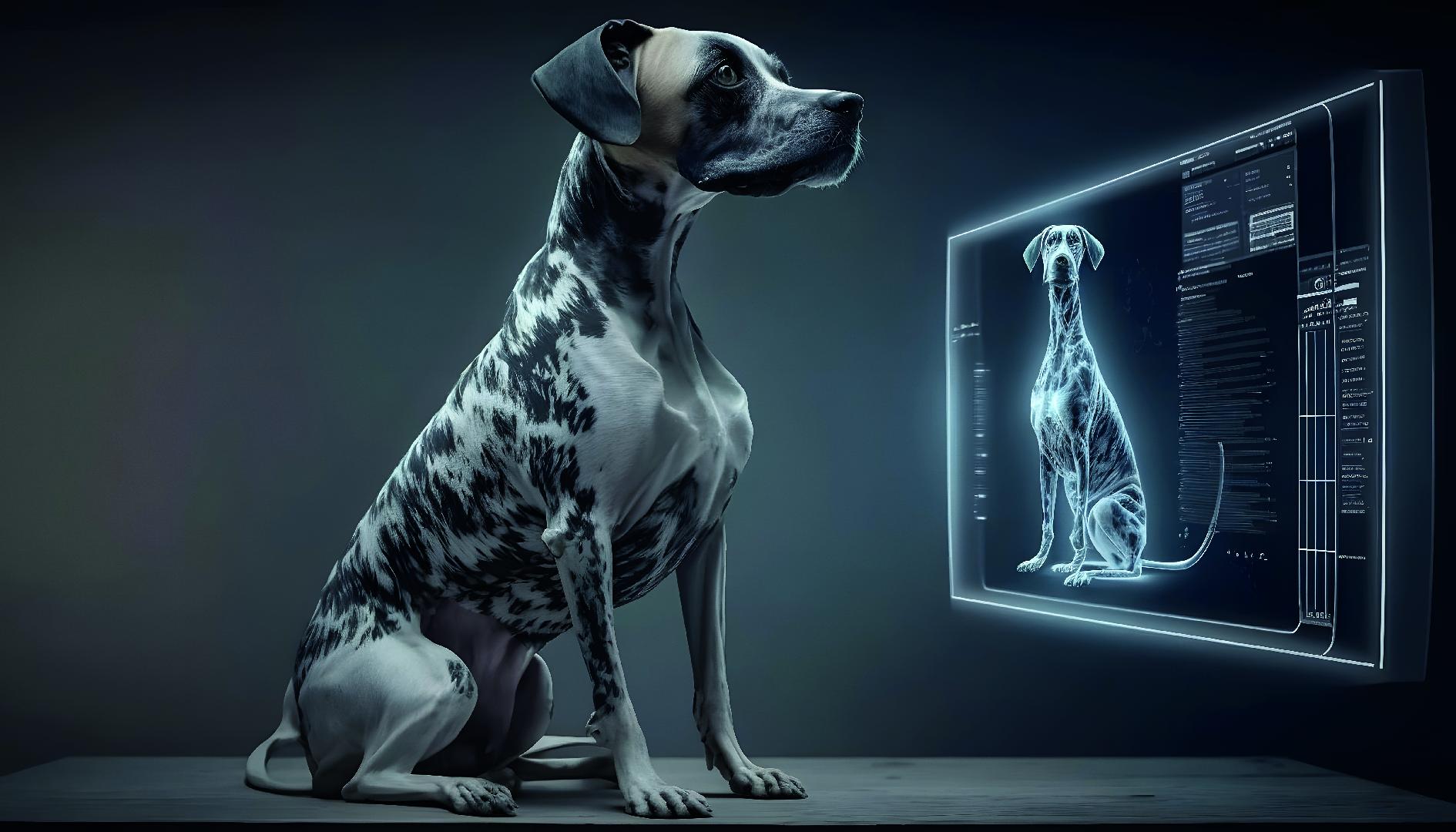 Trends
Trends
4+ MIN
22/02/2024
Por María Candelaria Carbajo
PET-TECH: cutting-edge technology and startups for the pet industry
In turn, the pet universe seems to become the best friend of investors looking for new technological opportunities. More and more startups are entering the market with innovative game-changing offerings.
As the trend of treating pets like family members gains momentum, the pet tech industry is growing significantly, and venture capital firms are quickly recognizing the potential of this industry.
Today, the pet industry is witnessing a rise in business initiatives aimed at the diverse needs of today's pet owners. Areas such as health and well-being, food and nutrition, technology, and pet services, and much more are the areas that attract all attention.
Recently, startups in the industry have multiplied, and new ones continue to appear, mainly those of the DTC (Direct-To-Consumer) style.
Why join the pet-tech sector?
Pet humanization
Digital natives spend more time searching for online solutions for their pets. They are spending more and more money on personalized solutions that fit their pets' needs. Today, it is not uncommon to see that owners buy more expensive products if they are ecological, organic, or kinder to the environment or the natural pets' growth.
Just as in human nutrition, the boom in personalized food packages continues according to the consumer's requirements, tastes, or eating plans. In the pet food industry, this trend is only growing. The startup Butternut Box, for instance, has received £280 million in funding to continue its project to prepare and deliver healthy meals and snacks for dogs, according to TechCrunch.
Other sectors attracting funding are the design of personalized meals by weight and needs of each pet and alternative proteins with vegan, cellular agriculture, precision fermentation, and insects.
Disruptive healthcare models
The high costs of veterinary care have always been a problem and, in many cases, an impediment when it comes to adopting or acquiring a pet or not. This is being addressed by the emergence of new comprehensive and lifetime insurance plans that are expanding the available and accessible options.
The case of Get Joy, for example, has already expanded beyond food and has entered on-demand veterinary services after generating an initial round of funding in January 2022. There are also other successful cases, such as pet friendly, which promises personalized 'human-safe' subscription boxes for flea and tick medications and supplements with custom packaging featuring pets' pictures.
Additionally, we are increasingly finding telemedicine platforms that connect owners with veterinarians, subscription delivery services, and wearable health monitors to track vital signs and detect early signs of potential health problems.
A new pets' well-being era
Human trends such as gut and mental health, immunity, oral and skin care, and anti-aging through supplements and other products have also extended to pets. A simple search online will yield pet spa-like salons with services like manicures and pedicures, body treatments like massages, and more.
Toothbrush wipes, new products to clean tear stains, and ear cleaning products of natural origin are other products on the rise. Witch hazel, for example, has historically been used for skin care in humans and is now beginning to be seen in skin care and cleaning products for the face, eyes, and ears of pets.
Apps and digital products
The pet health app segment is expected to account for more than 25% of this market share by 2032. Many smart devices are already being developed to monitor pet health, such as the Dearbuds PE technology, launched in February 2023 by Linkface, which, through a digital device, controls the humidity levels of the ears of dogs and cats to avoid and prevent infections. Even the company behind the famous GoPro cameras is already thinking about this market. The Fetch Dog Harness model allows you to capture images from different dogs' perspectives while they run, play, or dig holes in the ground.
Conclusion
In the current macroeconomic environment, offering unique products or services that work to add real value and solve consumer problems is essential to establish yourself and gain market share. The industry is already clear that owners now demand the same for their pets as they would for themselves or any other family member.
The trends we have invested in for years in consumer brands are transforming the pet industry at an even faster pace, and investors are increasingly interested in participating in the capital allocation of innovative projects.
The pet startup ecosystem is driven by a passion for pets and a commitment to innovation. Hand in hand with these emerging ventures, it will be possible to reinvent pet care, combining technology, personalization, and social impact to provide a comprehensive and enriching experience for both pets and their owners. With each new venture, the industry grows and offers more possibilities to improve the lives of man's best friends.
Source: All Pet Food Magazine.
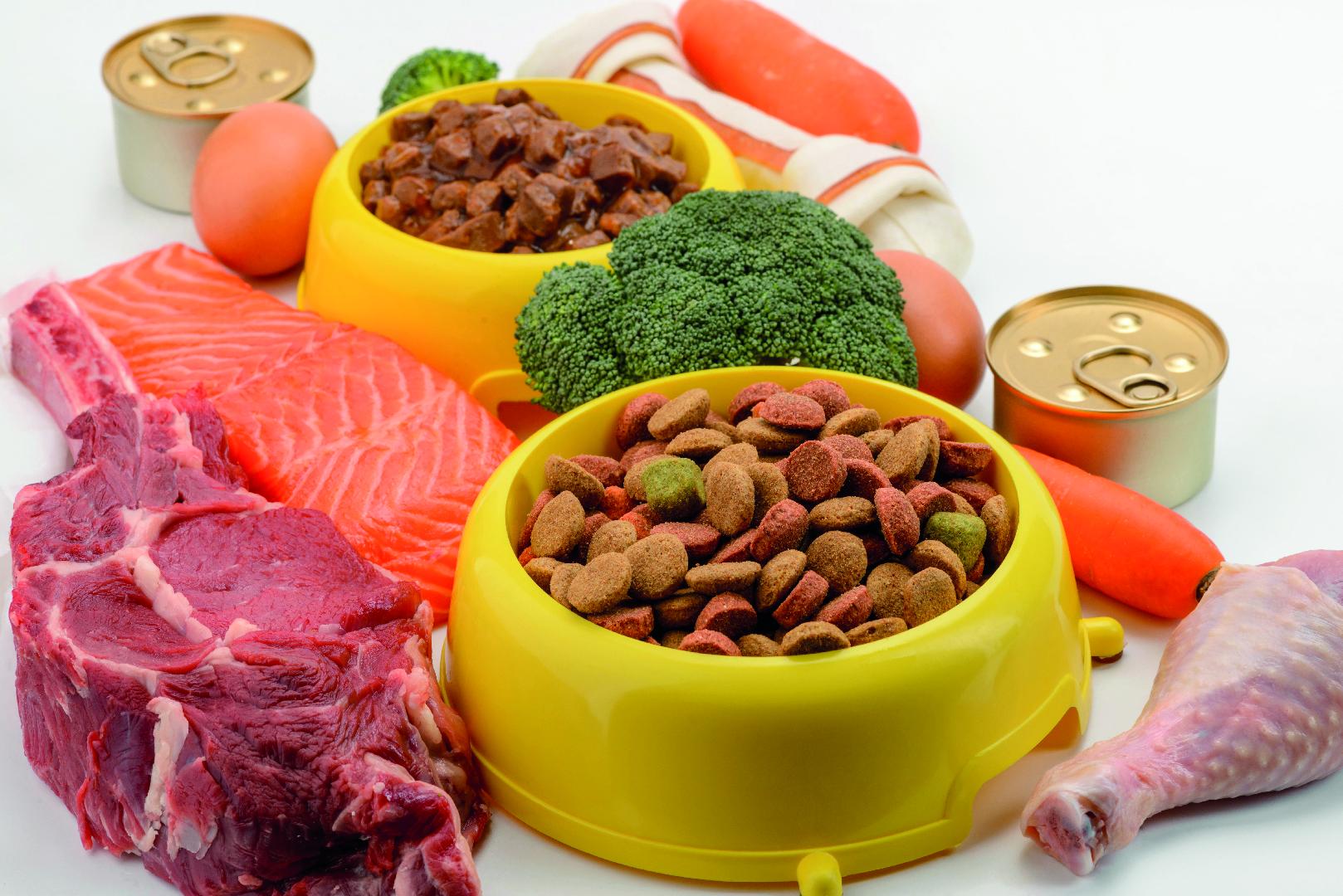 Formulation
Formulation
4+ MIN
21/02/2024
Por Armando Enriquez de la Fuente Blanquet
What food category does my pet need?
Years later, the well-known "Ken-L Ration," canned horse meat, was born in the United States, and thus the first wet diet appeared. Later, in the 1940s, nutrition programs for life stages began. In the fifties, the first therapeutic diets came out, and in the seventies, we saw the first personalized diets by race. It was not until 1980 that the National Research Council published nutritional requirements for dogs and cats. Thanks to this, the nutritional bases are established, along with other guides such as AAFCO or FEDIAF, to provide balanced nutrition to pets.
The following are, in very general terms, some examples, since the specific amounts may vary depending on the food formulation:
Dog nutritional requirements:
Proteins
Puppies: Minimum 22%
Adults: Minimum 18%
Fats
Puppies: Minimum 8.5%
Adults: Minimum 5.5%
Fiber
Varies depending on the specific formula needs.
Vitamins and trace minerals
Specific to the dog's needs and life stage
2. Cat nutritional requirements
Proteins
Puppies: Minimum 30%
Adults: Minimum 26%
Fats
Puppies: Minimum 9%
Adults: Minimum 9%
Fiber
It varies depending on the specific needs of the food.
Vitamins and trace minerals
Specific to the cat's needs and life stage.
Over the years, a wide variety of foods have emerged. With this, the market has had to organize into types or food categories to provide the consumer with the nutrition they are looking for to meet the needs of each pet.
In many countries, pet foods are subject to regulations and standards set by authorities. This includes ensuring that foods meet certain nutritional standards and clear labeling. An important point to consider with any food type is to follow the manufacturer's recommendations for the appropriate daily amount based on your pet's age, size, and specific needs.
Currently, there is a clear definition of food for dogs, cats, birds, rodents, reptiles, etc. However, the nutritional requirement varies depending on factors, such as age, size, activity level, and specific pet needs. So, in addition to species, pet food should be classified by these subcategories.
Within the wide variety of pet food categories, there is one established with the economic capacity of each pet parent (in addition to the digestibility of its nutrients): Economy, Standard, or Premium, in very general terms.
Within each segment mentioned above, there are other more complex subcategories. Let's talk about some of these:
Dry food
This type is the most widely sold in the world and usually contains a balanced mix of essential nutrients. It is produced under the extrusion process to achieve certain physicochemical characteristics. Some nutrients, especially micronutrients, can degrade with processing and time, so it is important to follow the manufacturer's recommendations regarding expiration date and storage.
Wet food
This type has a high-water content. Some pets prefer it because of its texture and flavor. It is recommended as a diet supplement of dry foods to promote dental health, as wet food may not be as abrasive.
Semi-moist food
It is a combination of the above.
BARF food (an acronym for "Biologically Appropriate Raw Food")
It consists of raw foods such as meat, bones, organs, and vegetables. It is based on the idea of being more like the one an animal would find in nature. The raw diet may lack some essential nutrients, so it is important to consider supplements, as well as make sure to maintain high hygiene standards to avoid bacterial contamination.
Breed-specific foods
Foods formulated to meet the particular needs of certain breeds.
Foods for specific life stages
These can be for puppies, adults, or seniors.
Foods for pets with special dietary needs
We can mention, for example, grain-free, hypoallergenic, or foods for pets with weight problems.
Snacks and treats
These are small portions of tasty foods for training or as a reward. They are not substitutes for the main meal.
Nutritional supplements (vitamins and minerals)
They are designed to ensure that the pet receives all the necessary nutrients. Not all animals need supplements.
We should remember that a pet will eat the food their owner selects for him and, usually, it will be the same for long periods of time. This food must be balanced and provide all the nutrients so that a pet remains in good health and well-being.
Pet parents now have access to more food options and information, and research on pet nutrition has become more advanced and available. As we have seen, there is a category designed by years of research for each specific pet. These foods are prepared to cover each and every one of the nutritional requirements of a dog or cat, considering various factors, including the species, life stage (puppy, adult, senior), size (small, medium, large), breed, activity level, and any special dietary needs.
It is important to note that food choice should be based on the specific needs of each individual pet, as today, food categories that nourish the pet 100% are available for everyone.
By MVZ. Armando Enriquez de la Fuente Blanquet.
Source: All Pet Food Magazine.
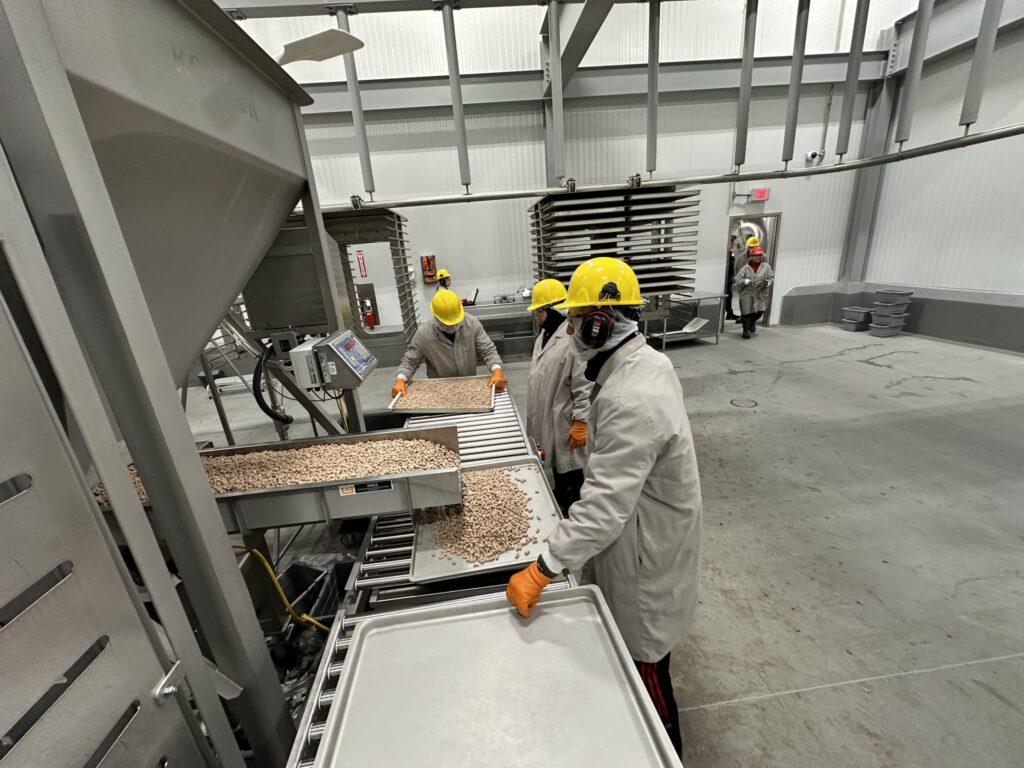 Market Information
Market Information
3+ MIN
20/02/2024
Petsource by Scoular’s $75 million expansion helps customers grow, opens door to new ones
SEWARD, Nebraska (Feb. 13, 2024) – Petsource by Scoular has completed a $75 million expansion that delivers extra capacity to help current customers grow and space to accommodate new customers seeking production at the state-of-the-art facility.
The tripling of capacity also enables customers to more efficiently introduce new products to the market, with the expansion providing an additional 70,000 square feet of freeze-dried pet food ingredient manufacturing space. Freeze-dried products are among the fastest-growing pet food categories.
The expansion of Petsource's Seward facility created 75 new jobs, with more hiring planned. Petsource now employees over 150 people, making it one of the top 10 largest employers in Seward County, a business hub in southeast Nebraska. Petsource is an indirect, wholly owned and independently operated subsidiary of Scoular.
Petsource has been a leader in streamlining the manufacturing of freeze-dried pet food products. Petsource was among the first nationwide to bring the manufacturing steps together under one roof when it opened in 2020 – providing everything from recipe development to raw meat processing, freeze-drying, and packaging – creating an end-to-end solution for brand owners to help support their growth initiatives.
'We are excited we can deliver additional capacity for our customers, both current and future, and support their growth plans,' said Petsource President Amy Patterson. 'Strong demand, growth in our customers' businesses, and our desire to continue to provide them high quality, innovative solutions drove the project.'
New customers have been seeking both Petsource's integrated production process, and its food safety and quality standards, another factor setting it above many competitors.
'Scoular thrives both on helping our valued customers grow and helping our communities prosper,' CEO Paul Maass said. 'We are proud to continue to invest in the state we have called home for over 130 years.'
Scoular has partnered with pet food manufacturers for decades and will continue to invest to support the marketplace's growth. The Petsource expansion is a critical component to larger strategic growth plans supporting the pet food industry.
'I am thankful for Scoular's 130 years of business impact in Nebraska and I congratulate them on Petsource's growth over the last four years in Seward County,' said Nebraska Gov. Jim Pillen.
Petsource – bolstered by the expansion – has helped spur job growth, residential construction and other economic development in Seward County, said Jonathan Jank, President & CEO of the Seward County Chamber & Development Partnership. He also credits Petsource with helping draw other businesses to the Seward/Lincoln Regional Rail Campus where it has served as an anchor since first starting operations there over three years ago.
'Petsource has been a tremendous employer not just in our county but in the region,' Jank said. 'They have been a best-in-class employer and we are excited for them to continue growing in our community.'
About Scoular
Scoular is an employee-owned, over $10B agribusiness leading the way since 1892. We buy, sell, store, handle and process grain and ingredients by leveraging our global networks and expertise in international trade and transportation. Employing 1,400 people in more than 100 offices and facilities in North America and Asia, we provide safe and reliable solutions to farmers, grain processors, renewable energy producers and manufacturers of animal feed, aquafeed and pet food as well as food, beverages and supplements. Scoular, headquartered in Omaha, ranks 49th on the Forbes list of America's largest private companies.
Source: Scoular.
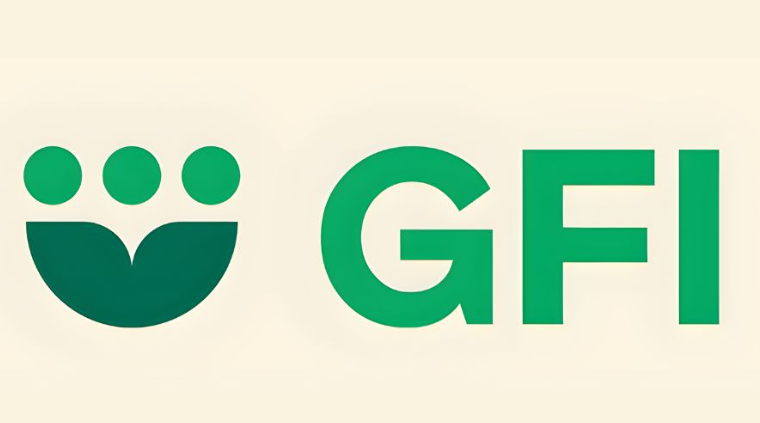 Market Information
Market Information
2+ MIN
19/02/2024
How a $12.3 million investment will impact GFI’s pet business
Global Food and Ingredients (GFI) has entered a definitive agreement to raise $12.3 million (€11.3M) through an investment in equity and debt for its pet food subsidiary Big Sky Milling. This would include an initial funding round of $11.8 million (€10.8M), followed by an injection of $0.5 million (€0.4M) into the corporation by 35 Oak Holdings, a company shareholder. According to a company statement, proceeds are then expected to refinance existing loans by GFI's core ingredients division and unlock liquidity to invest in the further growth of the operation. Big Sky was created in 2023 for Toronto-headquartered GFI to transfer all of its pet food ingredients assets and businesses serving the North American pet food industry, aid product expansion and make new investments. 'Under the Pet Food Transaction, GFI will transfer all of the assets and liabilities associated with its pet food ingredients division to a newly formed and wholly owned subsidiary ('Pet Food Co'),' says the company. GFI will sell a 49.9% equity stake in Pet Food Co to 35 Oak for approximately $3.2 million. Once the transaction concludes, GFI's core ingredients division will agree with Big Sky to generate recurring annual revenue of a minimum of $180,000 (€165,500). Driving the business GFI recorded revenue of $17.6 million (€16.1M) in the 3 months ending September 2023. According to company data, plant-based pet food ingredients and 2 other categories—split peas and downstream retail packaged products—accounted for 43.7% of total revenue. The same 3 categories accounted for 40.5% of revenue share for the first half of its fiscal year (FY) 2024. In the same quarter, 35 Oak Holdings also cleared a $3.0 million (€2.7M) advance toward the Big Sky transaction. Source: GlobalPETS
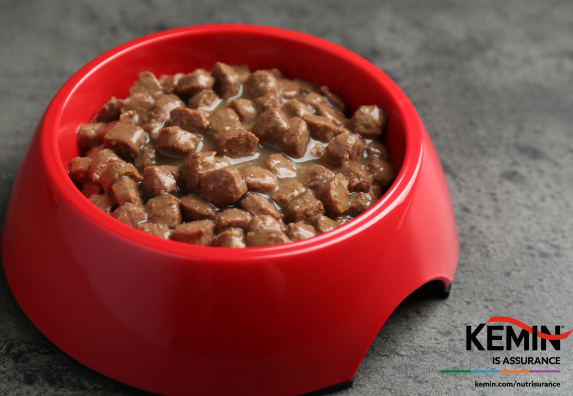 Wet food
Wet food
6+ MIN
16/02/2024
Wet Pet Food Quality
Wet pet food is a popular choice among pet owners, with more than 6.5 billion kgs sold in 2022¹. Pet owners often see wet pet food as a more premium option than traditional dry kibble diets.
They expect their preferred wet pet food brand to be palatable to their pets and have the same appealing aroma, color, and texture every time they open a can or pouch. Consistency in these qualities is particularly important for pet food manufacturers to maintain their brand image. Flavor, aroma, color, and texture can be affected by key parameters of pet food production, including processing conditions, pH, grind size, and thickeners.
Kemin: Your partner in wet pet food
Testing solutions in wet pet food is more complex than in dry foods. Kemin has invested in a wet pet food pilot facility to provide partnership opportunities with customers seeking solutions to their wet pet food challenges.
This facility is used to build pilot-scale wet pet food batches of loaf or chunk in gravy formulas in cans, trays, and pouches. This facility offers an opportunity to leverage Kemin's expertise across the value chain to help address several key challenges, including palatability, biogenic amine formation, and color retention.
At Kemin, we care that our solutions work in pet food matrices and have minimal impact to product integrity and quality standards. Therefore, pilot-scale wet pet food runs can be tested for many success criteria, including palatability, texture, viscosity, pH, color, weep, and aroma analysis, depending on customer needs.
The right texture
While each wet pet meat dough manufacturing process may be unique, it has been observed that meat grind and disintegration quality affect loaf pâté texture or hardness. It has been observed that cats preferentially eat diets with significantly softer loaf pâté texture versus a harder one. Pet parents may also prefer the look of a softer loaf pâté versus a hard, brittle one². Loaf pâté quality is a metric Kemin measures on diets manufactured at their Wet Pet Food Pilot Plant.
Kemin Texture Testing³. A texture analyzer with a ball probe can simulate the feel of meat in an animal's mouth and on their model diet. Diets with various meat cutting shear were manufactured at the Kemin Wet Pet Food Pilot Plant and compared to a commercially available Turkey and Giblet Loaf Pâté diet using Tukey Honest Square Differences statistical analyses, with a p-value less than 0.05 to distinguish texture differences.
The Turkey and Giblet Loaf Pâté recipe with minimal meat grinding and cutting shear had a significantly harder loaf pâté than two times and three times more shear [Figure 1]. Compared to desired texture of the benchmark loaf pâté diet, it is observed that too little cutting shear created a significantly harder loaf pâté. Using two times and three times more cutting shear made similar texture hardness to benchmark loaf pâté.
Achieving the ideal "look"
Just like cooking a steak or chicken breast releases juices, meats in a wet pet diet release water during sterilization cooking through the retort process. Meat scientists refer to these juices as weep, syneresis or expressible moisture. Loaf pâté diets sometimes have too much liquid weep, which may thin out the gravy or gel. Too much weep can adversely affect consumer perception, as some consumers view quality wet pet diets as having thick liquid like a gravy or gel.
Often thickeners like starches, gums, and proteins are added to diets and special processing is used to enhance soluble proteins and reduce liquid weep. Literature from Kansas State University confirmed that wet pet diets containing only the ingredients necessary for complete and balanced nutrition may be too thin to rapidly fill cans, have sedimentation challenges, and express too much liquid after sterilization cooking. The type and quantity of thickeners must be balanced to achieve the right 'look', including the right amount and thickness of the liquid in a wet diet. Both 'Thick to Thin' and 'Thin to Thick' ingredients are necessary.
'Thick to Thin', Guar gum is a popular ingredient to add to nutritious wet pet meat doughs to thicken it, maintain a homogenous mixture, and to rapidly fill cans. After sterilization cooking, wet pet diets with added guar gum resemble diets with no guar gum. In other words, viscosity and thickness provided by guar gum assists in cooking but not to maintain a thick liquid after cooking.
'Thin to Thick', Other thickeners, gums, and proteins are added to nutritious wet pet meat doughs to enhance their qualities after sterilization cooking. These gums are considered 'Thin to Thick' ingredients, among them kappa carrageenan, xanthan gum, and locust bean gum. These thickeners offer some viscosity before the cooking step but have been observed to thicken remaining liquid and to significantly reduce liquid after sterilization cook.
Overall palatability
After optimizing look and texture, the last step is to ensure that the wet diet is palatable enough to encourage enthusiastic consumption by the target customer- the pets. There are many factors that impact palatability including texture, ingredient type and quality, processing and the type of palatability system that is used.
Freshness + Palatability. Ingredients are carefully selected by availability, quality, price, flavor, and processability to meet market needs. Many wet pet manufacturers use both fresh and frozen meats to make their product, which has advantages and disadvantages. Frozen meats have a significantly longer shelf-life and provide ingredient flexibility and availability. On the other hand, frozen ingredients can be difficult to grind or disintegrate, require more energy to activate than fresh meats, and require storage management. Fresh meats can be less expensive and are easier to process than frozen but are difficult to preserve more than a few days and challenging to minimize microbial growth. Aged, fresh meats grow micro-organisms which impact meat dough quality by developing biogenic amines and shortening mandate time – the time between seaming cans and starting sterilization cook process – for wet pet manufacturers. Figure 2 shows that cats prefer lower biogenic amine diets, which can be achieved by using fresher meat or utilizing an antimicrobial treatment to help maintain fresh character.
Use of a Palatability Enhancer. Wet pet food is often perceived to be highly appealing to cats, but some cats may be reluctant or refuse to eat a diet altogether. Pet food manufacturers can elevate the profile of wet cat food diets by adding palatability enhancers to the finished diet. Figure 3 shows that the addition of a dry palatant in the chunk component of a chicken-based chunk and gravy diet was statistically preferred to a control diet with no palatant. Palatability performance increases with increasing palatant application rate. All rations were made in the Kemin pilot plant.
Moreover, palatant addition to the wet cat diet can transform an amalgam of animal proteins into a product with a clean, unified consumer aroma. Palatants tested in the Kemin Pilot Plant have changed the perception of cat wet pet diets from one that is gamey or pungent to more pleasant meaty flavors or aroma typical of the retorted foods industry.
CONCLUSION
There are many factors that can influence the overall consumer experience of a wet pet food brand. Understanding how to make a consistent, appealing product is key to satisfying loyal customers and further gaining market share with new customers. Pet food manufacturers should consider the value of partnering with suppliers that understand the complexities of wet pet food production and make solutions tailored to their specific needs.
By: Gregg Schieffer, Ph.D Associate Scientist-Palatants, Kemin Nutrisurance.
Source: Kemin Nutrisurance.
1 Euromonitor, 2022.
2 Hagen-Plantinga, E.A., Orlanes, D.F., Bosch, G., Hendriks W.H., van der Poel, A.F.B. Retorting Conditions Affect Palatability and Physical Characteristics of Canned Cat Food. J Nutri Sci. (2017), 6, e23, 1-5.
3 Dainton, A.N., Dogan, H., Aldrich, C.G. The Effects of Select Hydrocolloids on the Processing of Pâté-Style Canned Pet Food. Foods. (2021), 10, 2506-2519.
4 Kemin Internal Document: (SD-23-25564).
5 Kemin Internal Document: (SD-22-25122).
 Micro Ingredients
Micro Ingredients
4+ MIN
15/02/2024
Por María Candelaria Carbajo
Pet supplements on the rise
Over time, as countries have gradually eased restrictions and fear, pent-up demand and fiscal stimulus measures facilitated market growth in various sectors. Currently, we are witnessing a fusion of pre-pandemic strategies with the accelerated adoption of digital technologies, shaping a new era of market dynamics. Among the products that are developing the most, we find the pet supplements sector, so much so that an analysis by Grand View Research predicts it will reach 1,050 million dollars by 2027.
Current market situation
When we talk about supplements, we are talking about vitamins, minerals, herbs, botanicals, enzymes, amino acids, or other dietary ingredients.
Although the pandemic already seems like something of the past for many, the truth is that some sectors or markets, as is the case with this one in particular, owe a lot to it for the boom they experienced. Free time, little social life, the adoption of more pets, and the increase in time spent with them have made people not only more aware of the health of their animals but also have time to inform themselves about how to sustain it and enhance it over time. This is when the word supplements appears for many owners, and they begin to consider these products as an alternative to adding to the diet of their dog and cat children.
The pet food supplementation industry primarily works with vitamins, nutritional supplements production, storage, and distribution among other nutritional supplements that may be critical to a pet's health and growth, including birds, dogs, cats, and other domesticated animals. Products are extensively researched and quality-checked before they are available on the commercial market with the goal of ensuring animal welfare and promoting healthy growth throughout their lives.
Some supplements have generic applications, while others address specific problems, such as digestive problems, joint pain, or skin conditions. And while the industry is facing tremendous growth, it is also facing new challenges and complications.
Microbiome health ingredients, such as prebiotics, probiotics, and postbiotics, are of an ingredient category where the most research is being done these days. Prebiotics, probiotics, and postbiotics generate significant interest in both humans and animals. Specific research is very important in this class of ingredients because the intestinal microbiome of different animal species can vary considerably.
Investigation and development
The increasing rate of pet ownership drives market demand.
Several reasons, including personal decisions and medical factors, are causing a growth in the number of people who choose to have pets, such as remaining child-free by choice, the impossibility due to advanced age, and the economic instability that threatens more than an international population.
Some of the most common side effects due to supplement consumption include allergic reactions, overdoses, and digestive problems. Some of them may be more serious than others. However, it is one of the main restrictions on the industry's growth.
One of the key opportunities to pursue development is the investment obtained for study, development, and innovation. Currently, there is a significant lack of innovation in product development in the supplements sector at an international level. And, if we observe how people's lifestyle and eating consumption habits (and, consequently, their pets) change, it is expected that this will impact the needs, problems, and diseases that arise or disappear with the passing of time. Therefore, more investment is necessary to obtain more resources in understanding the segment to achieve generalized and specific product development without side effects.
The importance of knowing pet supplement consumers
Knowing the humanization process that has been strongly impacting the entire pet market, it is not surprising that, with the increasing attention paid to product labels, many ingredients that appear in human supplements have moved into categories of pets.
If we talk specifically about supplements, we can already identify in the industry that consumers of pet supplements have stronger or more pronounced tendencies and preferences than the average pet owner. These owners (and those in charge of the pet food purchasing decision) who buy supplements are characterized by proactively seeking information about nutrition. The most reliable source for them is their known veterinarians and, secondly, Internet sites: the same sources for seeking advice and information on human nutrition.
Other very reliable sources for pet owners when it comes to obtaining information about any product type or service for their pets (veterinarians, toys, food, exercise) are their friends and family. This is a key factor for all those companies that want to retain customers because they are the ones who, free of charge, share and recommend (and, therefore, spread) the brands they trust.
Conclusion
The supplements market has a lot of potential today if we analyze and consider all the trends that reach the pet food industry due to the demands and needs imposed on human industries. To achieve sustained growth, it is essential to promote development, research, and innovation.
Source: All Pet Food.
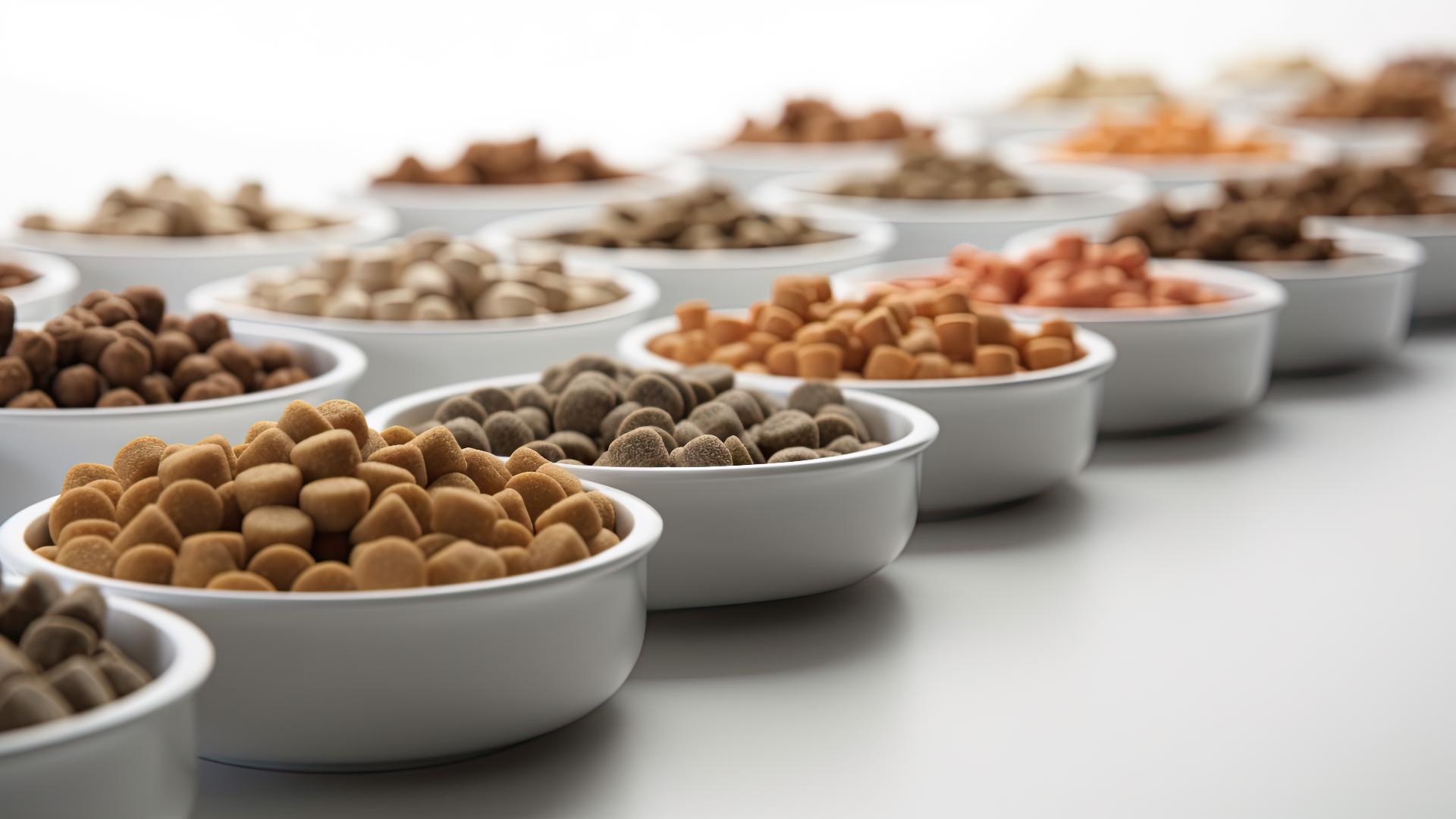 Formulation
Formulation
4+ MIN
14/02/2024
Por Candela Bonaura
Pet food definition, according to categories
Diet is a fundamental part of health, life quality, and slowing down physiological processes such as aging, prevention, and even treatment of multiple illnesses. And even though nowadays we have plenty of information on the nutritional requirements of pet animals, it is difficult to reach a consensus.
In this article, we discuss some concepts based on my analysis study and experience with my patients, considering that dogs and cats are carnivorous and, as such, require a greater supply of protein and ingredients of animal origin in most of their stages and states.
Food categories
Depending on their degree of processing: We will have ultra-processed foods (UP = dry or canned food or any other food intended for consumption by pets that is manufactured by carrying out a thermal or pressure processing step) or minimally processed (MP = fresh, frozen or any other food intended for consumption by pets, manufactured without thermal or pressure processing or one of them).
By the % of water, we can divide them into dry (8-12% water), semi-humid (15-30% water), and humid (around 70% water).
Depending on their function: complete foods (which cover a pet's whole nutritional needs) or supplements (for example, snacks or treats).
Depending on its manufacturing type: they can be commercial or homemade foods (cooked, BARF, or raw).
Depending on their age: Puppies (age will depend on animal size, up to 12-16-24 months) mainly focused on learning, immunity, development, and growth. Adults (from 12-16-24 months to 6-7 years of age), depending on animal size, whose main objective is balance and maintenance.Gerontes (+ 6-7), who seek a quality of life, promoting health by slowing down aging and the appearance of typical age-related diseases (kidney, heart, joint care, intestinal balance, nervous system health, etc.).
Natural foods: They lack artificial colorings, flavors, and antioxidants while having a lower degree of processing. This represents a better life quality, greater digestibility, and use of certain nutrients.
Functional foods: They include the so-called nutraceuticals or functional ingredients in their formula, which exert different functions or purposes in the body, such as joint protectors, immunomodulators, probiotics, antioxidants, anti-inflammatories, etc. These give the food added value beyond what is strictly nutritional.
According to its quality: Ultra-premium, super-premium +, low super-premium or super-premium, premium, standard, or Economy. To enter a category, a food must meet most of its characteristics (beyond what a label says).
Ultra-premium or super-premium +
Purchased at veterinarians or pet stores
Foods with high-quality ingredients
High nutritional density and greater digestibility
Extensive portfolio that answers pet needs at different stages, sizes, and special requirements.
With the greatest nutritional innovations on the market (functional ingredients +++)
Size differential with kibble differential (in size and composition)
Less fecal matter production
Very digestible elements (a higher proportion of ingredients of animal origin and in the first orders)
Greater benefits for the individual, such as shinier hair, more vitality, and better health
Minimum digestibility of 80-90%
Average protein and fat: 35-40/15-17, respectively
Minimum animal protein of 70%
Nutrient range with the highest industry standard
Smaller portions needed
No artificial colors, flavors, or preservatives
High technology to take advantage of all ingredients' biological value
Super-premium
Found at veterinarians or pet stores
High-quality ingredients
High nutritional density and digestibility
Extensive portfolio that answers pet needs at different stages, sizes, and special requirements
Nutritional innovation (functional ingredients)
Size differential with kibble differential (in size and composition)
Less fecal matter production
Greater benefits for the individual, such as shinier hair, more vitality, and better health
Very digestible elements (large amounts of ingredients of animal origin)
Minimum digestibility of 80%
Average protein and fat of 30-40/14-16, respectively.
Minimum animal protein of 60%
High industry standard nutrient range
Smaller portions needed
No artificial colors or flavors
Premium
May contain artificial colors and flavors
More fat and calories
Made with animal or vegetable flour
A mix of flavors, variety, and croquette shapes.
Ingredients that protect joints, improve intestinal health and facilitate digestion
Digestibility of 70-80%
Average protein and fat of 24-34/10-15, respectively
Animal protein is close to 40-50%
Usually have an average price
Standard - mainstream
Low density (provided by proteins and fats)
Low fat and protein content
Digestibility less than 75%
Target of consumers concerned about the price
Protein source mixture of meat meal and other non-animal sources
Low-quality ingredients
Smaller portfolio (no size differentials, sometimes even stages, no special care products)
Artificial colors, flavors, and preservatives
Average protein and fat of 20-30/10-12, respectively
Animal protein <40%
Economical
Low density (provided by proteins and fats)
The lowest fat and protein content on the market
Digestibility is less than 60%
Target of consumers concerned about the price
Protein source is a mixture of meat meal and bone powder
Lower quality ingredients
Smaller portfolio (no size differentials, sometimes even stages, no special care products)
Artificial colors, flavors, and preservatives
Average protein and fat of 20-27/8-10, respectively
Animal protein <30%
Poorly digestible fibers
9. Therapeutic: These are foods intended for a specific stage of an animal or need. They can be temporary or permanent, aimed at preventing, helping, or treating a specific disease. They are another clinical tool, a therapeutic one, sometimes the main one of a treatment (DIETOTHERAPY).
Although there is no specific legislation, we must consider the digestibility, type of meat or meat flour, differential of kibbles or sizes, portfolio, colorant presence, antioxidants, or palatability as important aspects when selecting the appropriate product for a pet's needs.
Product price, in general, is determined by the ingredients used (which are or should be organized in descending order), energy density, protein quantity and quality, and nutraceutical addition.
We must be able to guarantee complete food that covers the requirements of an animal according to their needs, stage and size, digestibility (maximum nutrient use), good energy intake (3000-5000 Kcal), palatability, and safety.
By: Dr. Bonaura M. Candela.
Source: All Pet Food Magazine.
 Market Information
Market Information
2+ MIN
12/02/2024
UK and US officials highlight the potential of pet food in South Korea
Both countries believe the market offers exciting business opportunities for pet firms. This was in response to a request from South Korean authorities for a new Export Health Certificate (EHC), an official document confirming that exports meet the health requirements of the destination country. Both parties, including existing exporters of pet food to South Korea, engaged in technical discussions to confirm compliance with the new requirements. The UK's interest in South Korea's pet industry is not new. In 2019, the country's Department for International Trade highlighted South Korea's pet industry as 'one of the fastest growing pet food markets in the world.' The Asian country is the 13th-biggest economy in the world, and its import demand is set to grow rapidly. According to the Department for Business and Trade, the UK's total trade (imports plus exports) with South Korea was £16.1 billion ($20.1B/€18.6B) in the 12 months ending June 2023. Regional and technical expertise The British government acknowledges the 'key role' that attachés play in breaking down market access barriers and reducing the complexity and burden of trading requirements for agri-food products. "Bringing together regional and technical experts who can provide valuable market intelligence means we can resolve market access issues and drive growth at a faster pace", it says. They have brought together regional and technical experts to resolve market access issues to aid the process. Earlier in 2023, the Korean government announced a plan to expand the country's pet industry to ₩15 trillion ($11.4B/€10.3B) in 3 years' time. Opportunities for US companies The United States Department of Agriculture (USDA) has recently included pet food as a business opportunity for agricultural products in the Asian country. The International Agricultural Trade Report published in December 2023 acknowledges that South Korea's global pet food imports rose from $239 million (€220.6M) in 2018 to $347 million (€320.3M) in 2022. According to these insights, the US is the country's second biggest pet food supplier, accounting for 21% of all imports in 2022. Despite inflation pushing the price of pet food up between 10% and 20%, the US government considers that the unfavorable US dollar/Korean won exchange rate has led South Korean traders to search for "more affordable alternative suppliers to meet import demand." Dog and cat food originally had a 5% tariff rate, but now these products enter the country duty-free due to the United States-Korea Free Trade Agreement (KORUS FTA) signed in 2017. Source: GlobalPETS
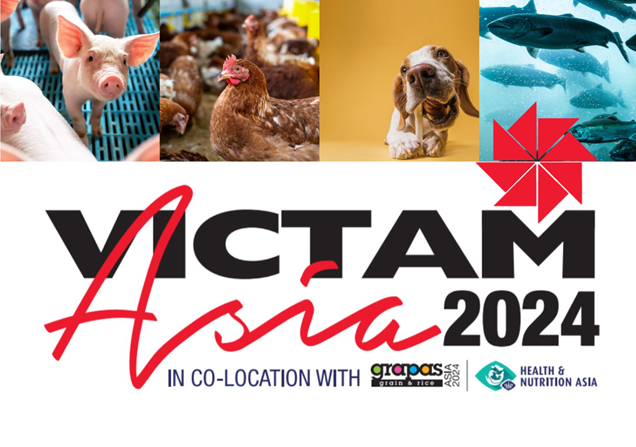 Market Information
Market Information
2+ MIN
09/02/2024
VICTAM Asia 2024: Celebrating Over 30 Years of Innovative Events in the Animal Feed Industry!
PRESS RELEASE DATED: January, 2024.
From its humble beginnings in 1991, VICTAM Asia has evolved into a prestigious event spanning over three decades. Today, it stands as Asia's premier showcase for the latest innovations in the animal feed, health and nutrition, and grain processing industries.
VICTAM Asia and Health & Nutrition Asia, and GRAPAS Asia 2024, organised by the Victam Corporation and VNU, continue to offer an unparalleled platform for the latest developments within these vital sectors.
Reflecting on the success of the 2022 edition, Sebas van den Ende, General Manager of the Victam Corporation, notes, "Following the challenges of restarting major events after the COVID-19 era, VICTAM Asia 2022 turned out to be a successful event. Spanning over 5,800 sqm, it brought together 231 exhibitors from 33 countries and attracted 6,121 visitors from 64 countries. Notably, more than 21% of these were key decision-makers in their respective fields. For 2024, we are building on this foundation to deliver an even more impactful experience."
According to a report by Future Market Insights, the animal feed processing equipment market anticipates growth, reaching US$ 34.8 billion by 2033 with a CAGR of 4.2%, the relevance of this event becomes increasingly significant. The Asia Pacific region, in
particular, stands at the cusp of transformation, fuelled by rapid economic growth and urbanisation, making it a critical market for industry stakeholders.
The 2024 edition of VICTAM will focus on key themes such as advancements in feed milling technology, the evolving aquafeed sector in Asia, and the latest in grain, flour and rice processing technologies, alongside critical sustainability initiatives. We are proud to host
eminent exhibitors like Amandus Kahl, DSM, CSI Group, and Van Aarsen, who are at the forefront of these developments.
Alongside VICTAM Asia, Health & Nutrition Asia is organised by the VIV worldwide team.
This event offers a comprehensive look into innovation in nutrition, pharmaceutics, and hightech animal health solutions. The two events strengthen each other, providing a holistic view of the industry, and serves as a unique trading platform for professionals in animal nutrition, pharmaceuticals, genetics, and related fields.
This event is a key opportunity to engage with industry leaders in Asia's expanding animal feed and health sector as well as the rice and grain milling industries. Network with innovators, gain insights from global leaders, and be at the forefront of emerging trends in Asia's rapidly expanding animal feed and health sector. Also learn from the best in the industry during the conferences and technical seminars which are organized simultaneously with the exhibition.
If you want to attend this event, complete the registration HERE.
Join us at VICTAM Asia and Health & Nutrition Asia 2024 from 12 - 14 March 2024 at BITEC Exhibition Center, Bangkok, Thailand.
Visit our website www.victamasia.com and www.vivhealthandnutrition.nl for more information.
Source: Victam Asia.
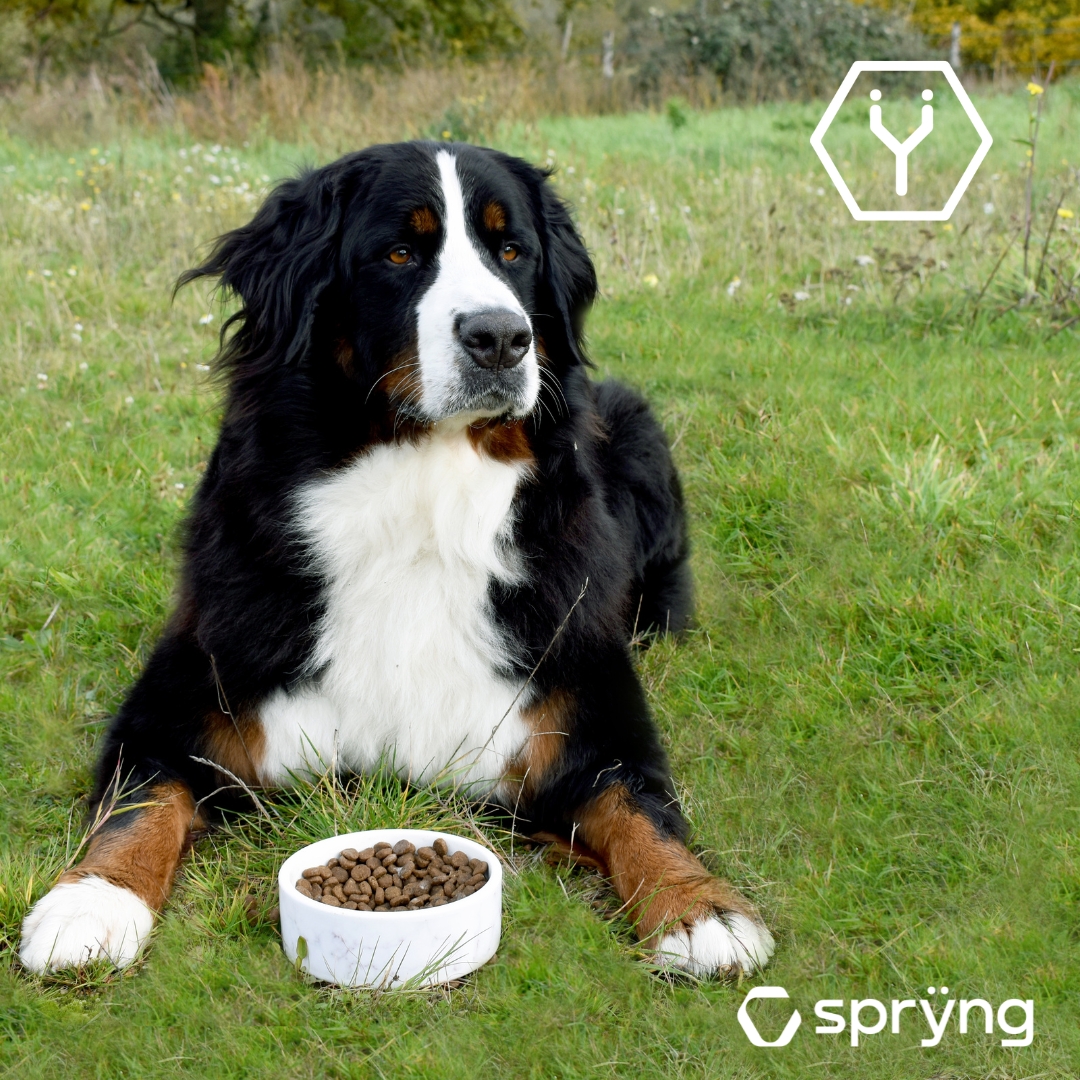 Market Information
Market Information
4+ MIN
09/02/2024
ŸNSECT: The first company to obtain authorization to commercialize mealworm proteins for dog food in the United States
The first long-term study (6 months) conducted on dogs demonstrates the nutritional benefits of defatted mealworm flour, with a high content of proteins rich in essential amino acids, the presence of unsaturated fatty acids, fibers, vitamins, and minerals.
As a substitute for some commonly used animal proteins, mealworm proteins can significantly contribute to reducing the environmental footprint of pet food.
Paris, January 24th, 2024. As one of the strongest players in the production of insect-based proteins and with the first customer received their delivery in December 2023, Ÿnsect sees its commercial prospects rapidly expanding with the opening of the American pet food market.
The AAFCO, the American authority responsible for the safety of animal food, has, for the first time, authorized the commercialization of an ingredient derived from mealworms (Protein70) for dog nutrition.
Studies conducted in the United States of America in collaboration with Summit Ridge demonstrate both the safety of Tenebrio molitor flour and its nutritional benefits. With this first authorization in the American market, Ÿnsect is poised to actively contribute to reducing the environmental impact of pet and dog nutrition.
'We are very proud to have obtained the very first authorization for the commercialization of mealworm-based ingredients for pet food in the United States. It is the recognition of over 10 years of research for the benefit of animal health. This authorization opens the doors to the immense American market just as we are preparing to deliver our first pet food customers from our Amiens farm.' Shankar KRISHNAMOORTHY, CEO of Ÿnsect .
First Authorization for the Use of Tenebrio molitor in Pet Food in the United States
After 2 years of evaluation, the AAFCO, the organization responsible for the safety of animal food in the United States, has, for the first time, authorized the commercialization of Ÿnsect ingredients based on Tenebrio molitor, specifically defatted Tenebrio molitor meal (Dried Mealworm Meal), intended for dogs.
This authorization was granted based on a comprehensive scientific dossier, including a 6-month trial introducing mealworm-derived ingredients into the diet of dogs. The results demonstrated both the safety of the product and its nutritional benefits as a substitute for commonly used animal proteins. As of October 2023, the FDA's scientific committee provided a favorable opinion.
The official journal publication in a few weeks will validate the rigorous process of the American authorities.
The pet food market in the United States is valued at over $42 billion.
Americans are particularly devoted to their pets. According to the American Veterinary Medical Association (AVMA), nearly 4 out of 10 American households have a dog (48%), totaling over 65 million dogs across the United States. In 2022, the market for pet products was valued at approximately $136 billion, with $42 billion dedicated solely to the pet food market, as reported by the American Pet Products Association (APPA). This market continues to grow, with a roughly 5% growth rate, according to a recent report by TechNavio experts.
'American pet owners are very attentive to the well-being of their pets, including providing appropriate nutrition. Our discussions with key players in the pet food market led us to anticipate significant development in alternative meat proteins in this market.' Philippe Pichol, SVP Chief Sales & Marketing Officer at Ÿnsect.
Proven Nutritional Quality
As part of the authorization request submitted to the U.S. authorities, Ÿnsect, in collaboration with Summit Ridge Farms, a leading reference in the world of scientific studies in pet food, conducted an extensive 6-month study highlighting the impact on dogs of a diet rich in mealworm-based ingredients. This study ensured the safety of a diet containing up to 30% mealworm proteins. It also demonstrated a very high level of protein digestibility, exceeding 80%, in line with industry professionals' recommendations (FEDIAF and AAFCO).
Additionally, Ÿnsect collaborated with Professor Kelly Swanson from the Animal Sciences Laboratory at the University of Illinois Urbana-Champaign to study its defatted mealworm flour from Tenebrio molitor. The study showed protein quality comparable to high-quality animal proteins traditionally used in pet food manufacturing, such as beef, pork, and salmon, is superior to standard poultry meal and common plant proteins.
Reducing the Environmental Impact of Pet Food, a Major Challenge
Most pets are carnivores and require a protein-rich diet. The pet food industry has been engaged in research and innovation for several years to reduce the environmental impact of pet diets, gradually incorporating alternative proteins.
While Tenebrio molitor flour, Protein70, from the Sprÿng brand has demonstrated its nutritional benefits, it can also help reduce the environmental footprint of pet food by replacing other protein sources. As mealworms are raised from agricultural by-products in cereal-producing regions, their environmental footprint is lower than many other traditionally used ingredients. For example, 1 kg of Sprÿng Protein70 flour emits half as much CO2 equivalent as lamb or soy flour, and 22 times less than beef flour.
About Ÿnsect
Ÿnsect is one of the global leader in the production of insect-based proteins and natural fertilizers. Founded in 2011 in Paris, France, by scientists and environmental activists, the Next40 member and B Corp-certified company transforms insects into high-value premium ingredients for pets, plants, and humans. Ÿnsect provides an ecological, healthy, and sustainable solution to meet the growing demand for protein and plant consumption.
Using pioneering proprietary technology protected by over 430 patents, Ÿnsect produces mealworms in climate-positive vertical farms that benefit biodiversity, aligning with the +1.5°C scenario of the COP21 Paris Agreement and the EU's 'Fit for 55' goal.
Ÿnsect operates several production sites including the world's largest vertical farm. The company has raised over $625 million from major global investment funds, banks, and public institutions. Ÿnsect exports its products worldwide.
For more information, you can visit their website HERE.
Source: Ÿnsect.
 Market Information
Market Information
5+ MIN
08/02/2024
The veterinary profession and its impact on climate change
Climate change involves long-term changes in temperatures and weather patterns. Certain shifts can be natural, including changes in the sun's activity or major volcanic eruptions, however, since the 1800s, human activities have been a main contributor of climate change. This is primarily because of the large amounts of burning fossil fuels like coal, oil, and gas. The burning of these fuels releases greenhouse gases that act like a blanket, trapping the sun's heat and causing a rise in temperatures.1
The rise in global surface temperatures has seen a 2º F increase since the 1800s. this might not seem like a huge difference, however Margo Mosher, global sustainability director, Mars Veterinary Health, explains how significant this can really be. In her joint session with Jo Ann Morrison, DVM, MS, DACVIM (SAIM), director of veterinary science at Banfield Pet Hospital, Mosher stated, 'Two degrees Fahrenheit may not sound like a lot, but if you think about it similar to the context of our body temperature when you have a fever—so our typical temperature is maybe around 98.6º F, if we increase that just 2 degrees up to 100.6º F, we're probably not feeling very well. And so, we can think of this similarly with climate change and really the significant impact that just a couple of degree change can have.'2
Therefore, when the earth temperature rises, the following could be at crucial risk:3
Biodiversity loss
Drought
Food security
Wildfires
Extreme heat
Sea level rise
Floods
Coral reef decline
What is veterinary medicine's impact?
The world's healthcare systems account for 4% of all greenhouse gas emissions, and veterinary medicine is a portion of that 4%.4 Providing care for pet patients has a carbon footprint from using electricity, anesthesia, medical supplies, and even veterinary professionals and pet owners driving to the clinic. According to IVC Evidencia, a European veterinary care provider, medical supply and pharmaceutical purchases used for veterinary practices is one of the leading contributors to the veterinary carbon footprint.5 This is the area in which veterinary professionals can have the most impact in reducing their carbon footprint.
What you can do
Conference travel: Dr Morrison explained how commuting to work and travel for conferences can add to a veterinary professional's carbon footprint. She suggested attending virtual meetings, however, 'If an in-person meeting is necessary, then is there a more sustainable option, rather than flying? Is there an option for things like rail or train travel or electronic vehicles? If flying is necessary, what are the most sustainable options to consider here? There's direct versus connecting flights, and these have different carbon footprints.'
Work commute: Morrison also posed the option of taking public transportation to work if that is a viable option. However, she did mention that this can also be a personal choice for each individual. 'The first thing to do is have some discussions with your teams. Investigate what is available in your area and see what people would consider in changing with commuting to the practice…maybe there is a fun or creative way to encourage biking to work—again, in areas where that is feasible and that will vary from place to place,' she said.
Virtual care: Offering telehealth can also offset clients commuting to the clinic. This can be beneficial even if just a portion of appointments can switch to an online format. Telehealth can also reduce the use of medical supplies, which has a large impact on the overall veterinary footprint.
Electricity reduction: Another small change practices can make is reminding associates to reduce electricity around the practice when possible. Turning off lights when a room is not in use or unplugging equipment that does not need to be on can be simple efforts made daily.
Anesthetic gases: Anesthetic gases used for procedures have different environmental impacts. Mosher recommended prioritizing the needs of the patient first, but to consider using lower impact gases, such as sevoflurane, and using lower flow techniques to reduce the impacts anesthesia has on climate change.
Sustainable purchases: Because medical supplies can be a major contributor to veterinary medicine's carbon footprint, Mosher suggested selecting suppliers who demonstrate a commitment to sustainability (when possible) and consolidating orders and deliveries.
Waste management and recycling: Waste management can be tackled by starting with prevention as the most preferred method, and when that is not an option, going down the line of reusing, recycling, recovery, and disposal being the last option remaining if necessary. For veterinary medicine, consider what in your practice that can be eliminated, reused, or recycled. For example, reducing paperwork and going digital with patient records can be an option in preventing waste.
Reaching for a climate friendly future
Mosher and Morrison's overall advice for reducing your practice's carbon footprint is to discuss with your team and see what will work within your means.
Engage your team and get everyone involved so each member of the team is making a difference. If certain members of your team are more passionate about climate change than others, let them take some of the lead and lean into their personal interests in improving the practice's efforts.
Celebrating small wins in the progression and becoming more sustainable is also important to recognize on this climate journey. Combating climate change is a collaborative endeavor.
Before wrapping up, Mosher shared a way to calculate your practice's carbon footprint by using the 'CoolClimate Network' website powered by the University of California, Berkeley. This can also share more tips for reducing your footprint. If interested, veterinary professionals can also access resources on Banfield or Mars Veterinary Health's website.
Source: DVM 360.
References
What is climate change? United Nations. Accessed January 25, 2024. https://www.un.org/en/climatechange/what-is-climate-change
Mosher M, Morrison JA. Climate change and the veterinary profession. Presented at: Veterinary Meeting & Expo; Orlando, Florida; January 13-17, 2024.
Climate change: 5 charts from the IPCC report that show why every increment of warming matters. World Economic Forum. March 23, 2023. Accessed January 25, 2024. https://www.weforum.org/agenda/2023/03/climate-change-ipcc-emissions-risks-net-zero/
Protecting the planet and its people: healthcare's climate action roadmap. World Economic Forum. June 2, 2021. Accessed January 25, 2024. https://www.weforum.org/agenda/2021/06/healthcare-climate-action-roadmap/
The positive pawprint: Sustainability report 2023. IVC Evidencia. 2023. Accessed January 25, 2024. https://ivcevidensia.com/getmedia/70832551-51b0-4fd2-9651-b0e2d5eac222/IVC-Evidensia-Sustainability-Report_2023.pdf
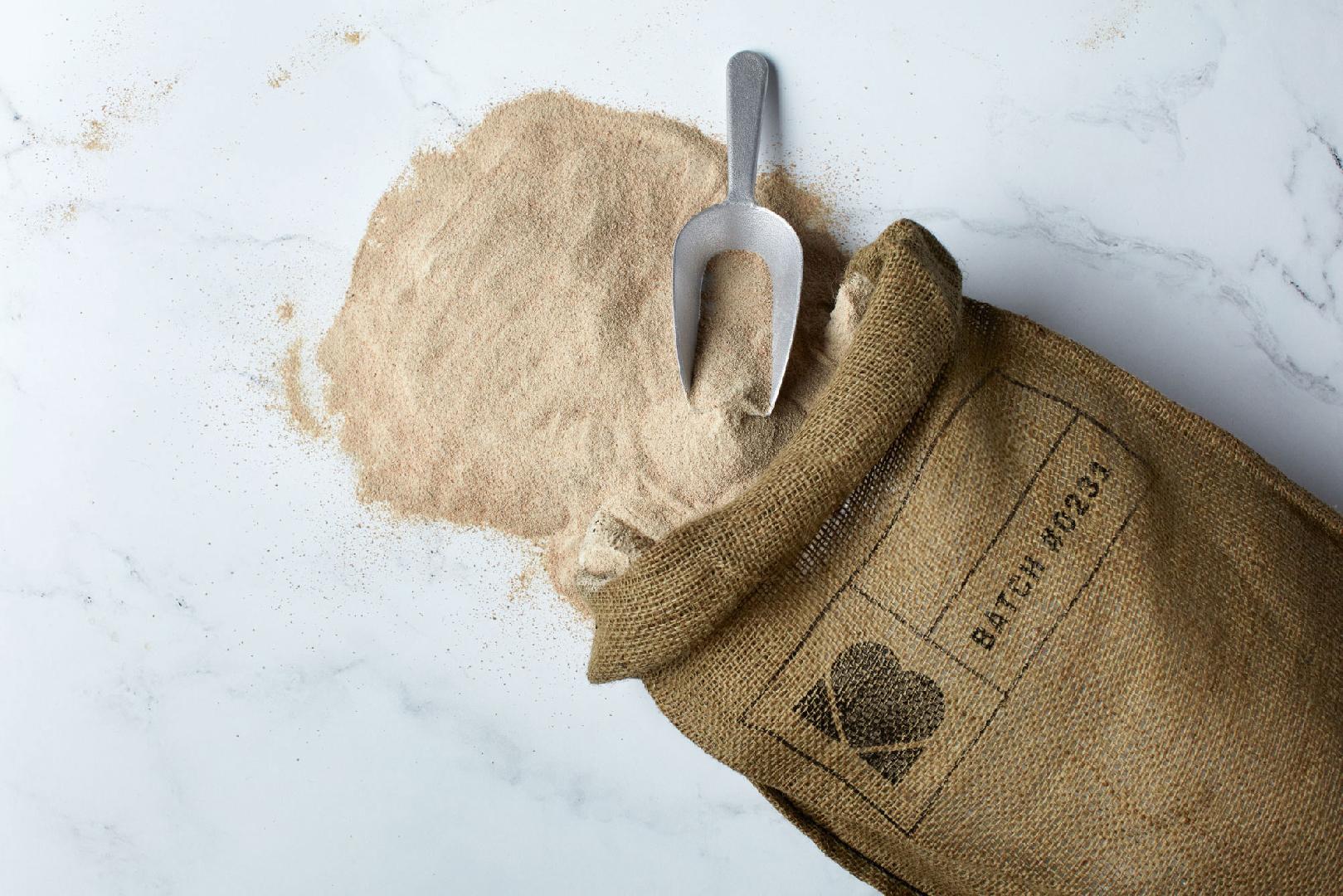 Manufacturers
Manufacturers
2+ MIN
07/02/2024
Hill’s Pet Nutrition and Bond Pet Foods Make Strides in Developing Sustainable Protein for Pet Food
Separately, the companies announced a second joint development agreement to create an additional animal protein for potential use in Hill's products. The collaboration between Bond and Hill's, announced in late 2021, aims to develop a source of more sustainable animal protein to fulfill the dietary needs of dogs and cats, company officials said.
'Hill's is known for its leadership in precise, complete and balanced, science-based nutrition. We are excited to continue our relationship with Bond and support their truly novel approach to produce animal proteins in a more sustainable way that meets our high-quality standards', said Dave Baloga, executive vice president, science and technology for Hill's Pet Nutrition.
The two metric tons produced by Bond represents a major milestone toward commercializing its fermentation technology for pet food applications, officials said. The scale of the delivery will allow Hill's to formulate a variety of products at its Pet Nutrition Center in Topeka, Kan., for evaluation.
That data will be used for the ingredient's eventual review by the U.S. Food and Drug Administration's Center for Veterinary Medicine, as well as to prepare prototypes for market evaluation, officials said.
'Producing tons of product at the 45,000 Liter scale is a major milestone in the Bond-Hill's collaboration', said Rich Kelleman, founder and CEO of Bond Pet Foods. 'Additionally, Hill's commitment to expand on our work together demonstrates the opportunity we collectively see in Bond's ingredients for their and the pet industry's food future'.
According to Bond, its precision fermentation platform is safe and established—building off a process that has been around for more than half a century to make everything from enzymes (rennet) for cheese manufacture to vitamin B12.
The process has been carefully reimagined to more efficiently produce proteins like chicken, turkey and beef for pet food applications, without the need to raise and process farm animals.
In the U.S. alone, 74 million dogs and 56 million cats in households currently consume large amounts of animal-based protein, according to the companies.
As a result, as noted in a 2017 study published in the scientific journal PLUS One, pets account for up to 30 percent of the carbon dioxide emissions associated with domestic meat consumption. This represents both CO2 and additional greenhouse gas emission from animal production.
Source: Pet Product News.
 Market Information
Market Information
1+ MIN
05/02/2024
Hungarian owners are paying 33% more in pet care than 5 years ago
Financial service company Cofidis has investigated pet consumer and ownership habits in Hungary and found that dog owners spend HUF12,000 ($33.78/€31.09) per month on food.
Pet care and veterinary costs are around HUF47,000 ($132.32/€121.75) per year. Compared to their 2018 survey, Cofidis' most recent results mark an almost 33% increase in pet expenses.
According to Euromonitor, Hungary saw the most significant rise in pet care product prices in Eastern Europe (22%).
40% of Hungarians own a dog
The survey, carried out in October 2023 with a 500-participant sample size, found that 4 out of 10 Hungarians have a dog at home.
50% of Hungarians think it is easier to interact with others with a dog, 55% believe that life is better with a pet and 67% say that a dog reduces loneliness.
Source: GlobalPETS
 Ingredients
Ingredients
6+ MIN
02/02/2024
Spray dried plasma in pet food: The multiple functions of a unique ingredient
The connection between human and pet food production is very important to optimize the use of by-products and minimize environmental impacts. Practically all by-products generated from the processing of meat for human consumption are properly used in the production of rendered animal protein ingredients and other applications in various industrial areas, thereby strengthening the application of a circular economy. Despite its relevance, advancements in the qualitative aspects of ingredients for use in pet food are needed because the quality is still very variable. Furthermore, the development of high nutritional standards for the food segment, such as food safety, high nutritional quality, and the use of ingredients that have functional properties have been a major challenge for the pet food sector today. In this respect, fresh ingredients, enzymatically hydrolyzed and dehydrated by more refined processes, such as lyophilization or spray drying have shown a growing increase in their use in formulations by the Pet Food industry. Image 1: Estimated excretion of dry matter (DM) and crude protein (CP) for each kilogram of ingredient ingested, considering the digestibility of the ingredients (Table 1). The spray-drying process consists in drying liquid products in a spray drying tower, equipped with hot air circulation that generates a hot air circulation that, when in contact with micro-drops of the liquid sprayed in the system by the atomizers, makes the dehydration of the product, keeping its solubility characteristics and better preserving the nutrients and functional properties of the ingredient. Some animal by-products are commonly processed this way, such as egg powder, plasma, hydrolyzed protein sources, milk, and whey, among others. This form of processing provides digestibility coefficients that can be higher than 95% (Song et al., 2015), when compared to digestibility coefficients between 80-90% found in ingredients dehydrated by conventional processes. In addition to reducing the excretion of nutrients into the environment, for dogs and cats, in practice, since fecal volume is a relevant aspect, this means an extremely significant reduction in the amount of stool produced by animals when consuming foods with high digestibility content. In Table 1 some comparisons of digestibility coefficients of conventional ingredients such as egg and plasma produced by spray-drying are presented and in Figure 1 a simulation of the amount of dry matter excreted by animals with each of these ingredients is presented, in order to show how much in practice these differences in digestibility can reduce the fecal output of animals. It can be observed that fecal excretion can be reduced up to 75% with the consumption of highly digestible ingredients. Table 1: Dry Matter Digestibility (DMD) and Crude Protein Digestibility (CPD) of conventional (Meat and Bone Meal; Standard Poultry Meal) and spray-dried (Egg powder and Animal Plasma, SDAP) ingredients. Plasma is a by-product of pork and beef slaughterhouses, obtained from the bleeding process of animals considered safe for human consumption, followed by the addition of anticoagulants, and subsequent centrifuging of the blood, to separate the plasma and cellular fraction (red blood cells and platelets), followed by decontamination with ultraviolet light and drying, usually by the spray-drying process. This production process maintains the solubility of the ingredient and its functionality to be used in extruded and wet pet food for dogs and cats. Image 2 shows a schematic diagram of the production process of this ingredient. Image 2: Summary production schematic of porcine or bovine spray drying plasma production (SDAP). Courtesy APC LLC, Ankeny, IA. Spray-dried Animal Plasma (SDAP) is used in human, animalfeed, and in pet food and can be used for various purposes, as shown in Table 2. Table 2: Major functions and effects of Spray-dried Animal Plasma (SDAP) observed in pet food. In wet pet foods, due to the high content of moisture, fat and the possibility of phase separation, the main technological application of SDAP is as an emulsifying and binding agent to improve water retention in the product, texture, juiciness and homogeneity (Polo et al., 2005; Polo et al., 2007; Polo et al., 2009). In dry pet foods processed by extrusion, its technological properties have not yet been studied, but it is likely to have action as a structure-forming agent and emulsifier, due to high solubility and composition. Regarding the nutritional composition, the SDAP, as a blood component, it is a very nutritionally rich ingredient, with emphasis on the levels of amino acids and minerals, presenting higher levels of essential amino acids, even when compared to the egg, which is a protein source reference in quality. In addition to this, the SDAP has bioactive components that provide its biological functionality. The SDAP's high amino acid concentration also represents other functional aspects associated with this ingredient, achieved due to the presence of immunoglobulins, bioactive peptides, growth factors, enzymes and metalloproteins, which confer immunomodulatory properties (Balan et al., 2021; Kanagaratham et al., 2020; Hammer et al., 2003), prebiotic (Miró et al., 2017; Moretó et al., 2020; Perez-Bosque et al. 2016), anti-inflammatory (Pérez-Bosque et al., 2016; Moretó et al, 2020) and neuroprotective (Garcia-Dust et al., 2020; Miró et al., 2017; Rosell-Cardona et al., 2021). Because of these multiple functions of SDAP in animal and human nutrition, which match the current demands for quality, nutrition, functionality, and sustainability, the next issues of Pet Food Brazil Magazine will present the other chapters of this article, which will discuss separately the role of SDAP in dry and wet pet food processing (Part 2), nutritional value (Part 3), and functional properties (Part 4), showing the main practical applications of this ingredient, based on information available in the literature. By: Ricardo Souza Vasconcellos Source: APC References Balan, P., Staincliffe, M., & Moughan, P. J. (2021). Effects of spray-dried animal plasma on the growth performance of weaned piglets—A review. In Journal of Animal Physiology and Animal Nutrition (Vol. 105, Issue 4, pp. 699–714). Blackwell Publishing Ltd. https://doi.org/10.1111/jpn.13435 Carciofi, A.C. (2008) Fontes de Proteína e Carboidratos para cães e gatos. Revista Brasileira de Zootecnia, v.37, Suppl., 27-41. Garcia-Dust, A., Miró, L., Pérez-Bosque, A., Amat, C., Polo, J., Pallàs, M., Griñán-Ferré, C., & Moretó, M. (2020). Dietary spray-dried porcine plasma prevents cognitive decline in senescent mice and reduces neuroinflammation and oxidative stress. Journal of Nutrition, 150(2), 303–311. https://doi.org/10.1093/jn/nxz239 Kanagaratham, C., el Ansari, Y. S., Lewis, O. L., & Oettgen, H. C. (2020). IgE and IgG Antibodies as Regulators of Mast Cell and Basophil Functions in Food Allergy. In Frontiers in Immunology (Vol. 11). Frontiers Media S.A. https://doi.org/10.3389/fimmu.2020.603050 Miró, L., Garcia-Just, A., Amat, C., Polo, J., Moretó, M., & Pérez-Bosque, A. (2017). Dietary animal plasma proteins improve the intestinal immune response in senescent mice. Nutrients, 9(12). https://doi.org/10.3390/nu9121346 Moretó, M., Miró, L., Amat, C., Polo, J., Manichanh, C., & Pérez-Bosque, A. (2020). Dietary supplementation with spray-dried porcine plasma has prebiotic effects on gut microbiota in mice. Scientific Reports, 10(1). https://doi.org/10.1038/s41598-020-59756-z Pérez-Bosque, A., Miró, L., Amat, C., Polo, J., & Moretó, M. (2016). The anti-inflammatory effect of spray-dried plasma is mediated by a reduction in mucosal lymphocyte activation and infiltration in a mouse model of intestinal inflammation. Nutrients, 8(10). https://doi.org/10.3390/nu8100657 Polo, J., Rodríguez, C., Ródenas, J., Morera, S., & Saborido, N. (2007). Use of spray-dried animal plasma in canned chunk recipes containing excess of added water or poultry fat. Animal Feed Science and Technology, 133(3–4), 309–319. https://doi.org/10.1016/j.anifeedsci.2006.04.008 Polo, J., Rodríguez, C., Ródenas, J., Morera, S., & Saborido, N. (2009). The use of spray-dried animal plasma in comparison with other binders in canned pet food recipes. Animal Feed Science and Technology, 154(3–4), 241–247. https://doi.org/10.1016/j.anifeedsci.2009.08.009 Polo, J., Rodríguez, C., Saborido, N., & Ródenas, J. (2005). Functional properties of spray-dried animal plasma in canned petfood. Animal Feed Science and Technology, 122(3–4), 331–343. https://doi.org/10.1016/j.anifeedsci.2005.03.002 Rosell-Cardona, C., Griñan-Ferré, C., Pérez-Bosque, A., Polo, J., Pallàs, M., Amat, C., Moretó, M., & Miró, L. (2021). Dietary spray-dried porcine plasma reduces neuropathological alzheimer's disease hallmarks in samp8 mice. Nutrients, 13(7). https://doi.org/10.3390/nu13072369 Song, M., Kim, S., Kim, Y., Park, J., Kim, Y. (2015) Value of Spray-dried egg in pig nursery diets. Journal of Agricultural Sciences, v. 42, n.3, 207-213.
 Palatants
Palatants
4+ MIN
02/02/2024
Palatability: The importance of flavor in pet nutrition
During the COVID-19 pandemic, many people adopted dogs and cats to fight loneliness and bring joy to their families. Abinpet data confirm this increase in the number of pets in households: the dog and cat population in Brazil increased 3.5% and 6% in 2021 and 2022, respectively.
However, not only has the number of pets in homes increased, but the relationship between owners and their pets has also evolved.
Owners have adopted a more humanized approach towards their pets, treating them like children. According to the Euromonitor survey, 68.6% of respondents globally say they consider their pets family member¹.
Pet owners wish their pets to have their values and lifestyles. According to a Mintel survey, 65% of German pet owners agree that their pet's diet has a direct impact on their emotional well-being².
This indicates that the pet owners' are more concerned with their pets' health and nutrition has changed, and are now considered essential expenses. Promoting pet well-being and improving their quality of life have become priorities.
The humanization trend has led many 'pet parents' to seek pet foods that contain the same ingredients and meet the same claims when purchasing their own and their family's foods.
For instance, Mintel data shows that 38% of pet owners in the US seek natural foods for their pets³. In the UK, 53% of pet food buyers agree that those made with sustainable ingredients, such as byproducts from other food production, are more attractive².
As a result of this new pet humanization trend, pet food companies have changed their production practices. In addition to sustainability, health, and trends such as Upcycling Food considerations, the industry has also focused on palatability. Pet food companies have given more attention to the characteristics of their products, including texture, aroma, perception, and, of course, flavor.
WHAT IS PALATABILITY
Just like with humans, food appreciation plays a key role in pet diets, ensuring that they consume the required amount of nutrients. But what is the role of palatability?
Food palatability involves a combination of factors, such as texture, shape, odor, flavor, and mouthfeel. It also plays a key role in improving the flavor of foods for special diets, balancing the composition of essential nutrients and vitamins with a pleasant flavor for animals.
In other words, palatability is related to food savoriness and desirability. After all, dogs and cats have their own preferences and may reject foods that do not meet their individual taste.
The primary factor that affect palatability are:
In short, palatability plays an essential role in dog and cat nutrition. Even though the food contains all the required nutrients, it will not be effective if it does stimulate the animals' appetite.
THE ROLE OF YEAST EXTRACT IN PALATABILITY
Choosing the right ingredients and flavor enhancers in pet food production plays an essential role in market differentiation. It increases the chances of getting the palatability right and, consequently, being appreciated by pets.
The most frequently used natural flavor enhancers are yeasts, essential oils, fats, vegetable oils, organic acids, spray-dried animal plasma, protein hydrolyzate, distillates, or food roasting and heating.
Adding yeast extracts to food stimulates the palate of dogs and cats, as they have an attractive flavor. Yeast extracts provides Umami, sweet, and sour flavors, optimizing food consumption and the utilization of specific amino acids.
Yeast extracts can be incorporated in the food mash or as coating, together with other flavor enhancers. allowing its utilization in a variety of pet food formulations, from extruded dry diets to nutraceutical compounds.
IMPROVING PET FOOD PALATABILITY
Since 2003, Biorigin has used biotechnology to enhance the flavor of a wide range of human foods and to offer yeast-based solutions to increase the attractiveness of pet foods
The company has recently launched the innovative PalaUp product line, which applies all its know-how in pet food ingredient production.
The PalaUp line is clean label and sustainable. It provides Umami flavor, and specific meat and roast chicken notes, bringing the taste buds of the owner and their pet closer together.
It can be used in different applications, and combined with different arrays of ingredients to provide unique sensory experiences to pets.
By applying Biorigin's extensive knowledge in human nutrition, PalaUp contributes to make pets' lives even more pleasant and humanized! For more information on the PalaUp line, CLICK HERE.
By: Biorigin
Sources:
¹ Premiumisation in Pet Care: Inflation and Beyond (Euromonitor, 2023)
² Patent insights: innovations shaping pet food (Mintel, 2022)
³ A year of innovation in pet food and products (Mintel, 2023)
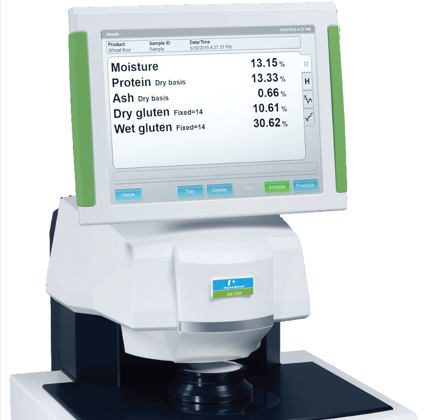 Laboratory
Laboratory
4+ MIN
31/01/2024
Quality Control in the Pet food industry through cutting-edge solutions
However, this trend presents significant challenges. Quality control and laboratory analysis processes are often slow and expensive, resulting in production delays, loss of raw materials, reprocessing of batches, and, consequently, the loss of time and valuable resources. All of this has been an obstacle to the efficiency and competitiveness of companies in the industry.
The solution to these challenges lies in near-infrared (NIR) spectroscopy technology, which has revolutionized the way the pet food industry approaches quality control, ingredient analysis, and process control. NIR instruments allow multivariate analysis to be performed in less than 10 seconds, providing accurate data for critical parameters such as moisture content, protein, fat, fiber, and ash, among others. As a result, not only is the quality control process significantly accelerated, but a substantial reduction in costs associated with traditional laboratory analysis is also achieved, giving companies the competitive advantage they need to stand out in the industry.
Pet food manufacturing process: critical points
Within the framework of the pet food manufacturing process, there are critical stages identified that require special consideration to achieve efficiency and productivity to obtain a final product of excellence. We cannot reach a good final result if our raw material does not meet the requirements. NIR instruments can quickly provide us with the information necessary to decide whether a batch we are receiving meets them or not.
Each food has its recipe, and each variety has its nutritional composition. NIR equipment can help us confirm if the mixture or formula was correctly made prior to entering the extruder. After drying, it is common to apply coatings with fats, oils, or flavorings to make them more palatable, and, in some cases, vitamins and minerals can also be added to strengthen the nutritional content. NIR equipment can monitor the fat or oil content at this stage.
Prior to packaging, and after the cooling process, obtaining an accurate reading of the humidity value of the product is essential to prevent common problems, such as the growth of mold or other types of fungi, which can cause deterioration of the product, affect its quality, and lead to significant economic losses. The ideal task for an NIR instrument will not only give us an accurate reading of the humidity value, but also allow us to verify that our final product meets the nutritional requirements we communicate on our packaging.
PerkinElmer has been leading the market for years with its DA 7250 analyzer, the third generation of NIR instruments in the company's more than 60-yearhistory. This equipment combines Near Infrared Reflectance technology and a diode array (DA) detector, allowing accurate and reliable results in less than 10 seconds. Thanks to its excellent signal-to-noise ratio, large analysis surface area, and light range used with superior penetration capacity, grinding of raw materials or pre-treatment of samples before analysis is not needed. In addition to its speed in obtaining results, the DA 7250 stands out for its efficiency, simplicity of use, robustness, simple maintenance and cleaning, as well as its extremely friendly operating environment. It also has two online and inline versions, the DA 7440 and DA 7350 respectively, fully compatible with each other in terms of calibrations.
Mathematical models, prediction, and security in the results
Thanks to spectral data from more than 15,000 dry dog and cat food samples from worldwide manufacturers (including kibble, biscuits, tricks, and more), calibrations have been developed to model relationships between NIR spectra and reference chemical results. This has been achieved using Honigs™ Regression (HR) types and Artificial Neural Network Regression (ANN) algorithms, as well as the application of a temperature stabilization pretreatment.
As an example, the following table shows data from calibrations carried out for samples of dry food for dogs and cats:
The great product variability incorporated in the calibrations, added to the aforementioned characteristics and virtues of the instrument, guarantee accurate and robust measurements over time. The models can be used for whole and ground pet foods with similar prediction accuracy. In parameters such as humidity, protein, fat, fiber, and ash, these models are very precise, with similar differences to the deviations obtained between the two reference laboratories.
In conclusion, in a market with increasing demands in terms of quality, nutritional value, and cost, NIR instruments are a powerful solution that offer fast, accurate, and robust results for all stages of the production process, reducing costs and leading to the efficiency and quality of our product at optimal levels.
By: Leonel Fulcheri - PerkinElmer
Source: All Pet Food Magazine
 Trends
Trends
2+ MIN
30/01/2024
State of Pet Homelessness Project: A global data initiative for understanding pet homelessness
The project provides data-led insights into issues which may impact pet homelessness in different countries. These insights can guide individuals and organizations working to tackle pet homelessness, and help them make a real difference.
Methodology
The State of Pet Homelessness Project reviewed 930 sources to select 180+ data points, conducted nearly 30,000 surveys with pet owners and non-pet owners, and interviewed over 200 pet professionals working in the field of pet homelessness.
The Project reflects the state of pet homelessness at a specific moment in time when the research was conducted.
About the Project
Tackling pet homelessness helps both animals and people – bringing the benefits of the human-animal bond to more people and ensuring every pet gets the sustained care and nutrition they need to thrive.
Pets that don't receive the care they need are at risk of poor health and compromised welfare.
Measuring the scale of pet homelessness is a complex task. To address this challenge, Mars partnered with leading animal welfare experts and organizations to launch the State of Pet Homelessness Project, a global data initiative.
To bring transparency, awareness, and insight to the challenge of pet homelessness, we have set out to build a data set that can offer insights into a range of attitudes and behaviors that impact the issue.
The Project spent 7700+ hours gathering data, conducted surveys of pet owners and non-pet owners and expert interviews in over nine months of fieldwork.
You can visit the website HERE
Source: State of pet homelessness Project and Mars PetCare
 Interviews
Interviews
4+ MIN
25/01/2024
The interview - Juan Gomez-Basauri
1. Which challenges have you faced in your professional career?
There are different and varied challenges during each stage of a professional career, from moving to a new place, or a new city, leaving old friends and colleagues, making new friends and colleagues, balancing work, and family, to learning very quickly from mistakes and understanding new cultures. I think most of us will have gone through one or the other, but the way we face each of them is what makes the difference, what makes us who we are. It's what defines us.
2. Why did you make the decision to open your own technology consulting business in 2023?
My style has always been to be highly entrepreneurial, especially when it comes to positioning new technologies and innovations in the market.
I was very fortunate that, in previous roles, my responsibility was to be that of a business champion, that is, leading the charge for new products and technologies, building from scratch, as we would say. However, there comes a time when one needs to step out of their comfort zone if there is a desire to keep growing both professionally and personally. That's the reason why I founded Magellan LLC.
3. What are your company's goals?
Magellan LLC is a business dedicated to providing innovative, science-based technologies and consultative solutions to the agri-food, nutrition, and human and animal health businesses.
4. What solutions do you provide and why?
The key is how you listen to your customers and answer their needs, which will define the solution and the service.
From product innovation to the design and execution of research projects, through the development and application of new bioactive and nutritional compounds, we listen extremely well to the needs of our clients and respond to them.
5. What's your vision about the pet food industry development in the upcoming years?
The pet food business is an exciting area, but, like any other industry, it is bound to change, to evolve.
There is a close connection between people and their pets. We care about them as much as we care about ourselves. There is an emotional component in the bond between human beings and animals. The industry will strive to find new, functional, and proven nutritional technologies and new feeding formats in order to provide health and well-being to our companion animals because they are part of our families.
6. How do you think trendy topics, such as sustainability and product customization, are being addressed by the market?
Sustainability is a driving force for business. However, how much of what we are actually doing is truly sustainable? Sustainability must include environmental, social, and economic factors. Everyone must do their part, as we are all linked, we are all connected as individuals and companies, from transportation to packaging, from supply chain to life cycle assessment, and with full transparency in all processes.
Companies must encourage and embrace innovation to find better technologies and processes that can be truly sustainable, and that, in the end, is what will make a difference.
7. In your experience, what will be the most significant challenges during 2024?
I'd say change and disruption and how we adapt to them, from raw materials and supply chain challenges to changing consumer spending patterns, to name a few. The market is evolving, and companies will have to adapt and do it quickly. This, in turn, will accelerate innovation and provide opportunities for launching new products and services.
8. What trends you could say will growth the most?
Predicting specific trends involves a certain degree of uncertainty. However, several trends are shaping the pet food market and will continue to evolve in the coming years.
As we mentioned before, sustainability and transparency are some of them. We will continue to see advances related to microbiome diets and the health benefits they bring will be the basis for personalized diets and foods. Interest in alternative sources of protein and energy will increase. Cellular agriculture and its applications will find their market niches. We should not discount AI (artificial intelligence) and how this technology will be a game-changer in the pet food industry.
Currently, from his technology and consulting business, Magellan LLC, Juan continues the legacy of what, he affirms, he has been fortunate to receive throughout his professional path:
'Throughout my career, I have been fortunate to have good mentors and people who believed in me, from my parents and family to my teachers during my college years and professional career. That is what I have practiced and will continue to strive for with Magellan LLC.'
Source: All Pet Food Magazine.
 Market Information
Market Information
4+ MIN
23/01/2024
5 things you need to be an effective leader in the Pet Food Industry
Stay informed
It's extremely important to understand your place in the market, where you are now, and what are the growth possibilities.
This actually applies to every industry, and what we did, at Aker BioMarine, is to invest in deep market research that would help us understand all of these.
Another way to stay informed and gain a deeper understanding of the overall market is by attending industry events. If I have an opportunity, I always come to conferences such as Interzoo or Petfood Forum and just 'listen' to the markets.
Now, the best hands-on method is to visit customers and hear their challenges in the pet food production and distribution processes.
I do that quite often, and sometimes it not only gives me precious information but also guides me toward the right way I can help the customer. For example, one time, right after a customer visit, we decided to organize technical training for the team of one of our biggest Scandinavian customers.
Get inspired
It's also highly important to find ways to get inspired. For me, Aker BioMarine's mission in general is a real inspiration and, of course, the most important one is that all our ingredients come from a sustainable source - the Antarctic Krill. The fact that we can help the planet and the oceans thrive it's outstanding.
I recommend reading this interview I had with Martita Mestey about the growing challenge of food insecurity and how to use the oceans more sustainably.
Our team also inspires me every single day. I love we can all work closely together, share our experiences and learn from each other. I believe teamwork can only bring great results.
I am also inspired by the actual results of the QRILL Pet products on my dogs. I have two dogs that have been eating pet food and supplements with krill for many years, and I can see with my own eyes the change in them. They are full of energy, with shiny coats, and their overall appearance is healthy.
The fact that I can see for myself the benefits our products have on my pets is the best inspiration you can ask for as a leader.
Inspire
I think the best way to inspire your employees is to trust them. And I trust my team completely. This means they can make decisions without involving me. Every day I do my best to empower them to make decisions on their own, without 'micromanaging' them.
They are closer to the customers than I am, which means they can consider their needs better than I can.
There is also another great side effect you can get when you apply this inspiration method. If you trust your team they will trust you back.
"If you trust your team they will trust you back."
Make experiments
At Aker BioMarine, we do a lot of experiments and we dare to take chances. For example, to increase brand awareness and promote the sport of dog mushing, we created our own QRILL Pet Mushing Team.
There have been also moments when our customers reached out and challenged us to do some new experiments, and not only on the production side.
So, one of our first and biggest customers convinced us to be part of their marketing strategy and marketing activities. We said yes and that was only the beginning - now we practice account-based marketing with almost all our customers.
Understand markets
If you want to sell internationally, you need to think strategically. And that is what we do here at Aker BioMarine and QRILL Pet. Understanding the pet food market in detail can also help our Human and Aquaculture departments.
Many aspects from the Human side of our business apply to QRILL Pet too, for example, the humanization trend 'What is good for me, it's good for my pet'. Many pet owners, myself included, know how important is to have a healthy diet so I also want that for my dogs. I always buy the best pet food for them with ingredients that have proven health benefits.
Another benefit of knowing in detail your markets? Well, you understand that you can't use the same sales or marketing tactics or even use the same channels for your product everywhere.
For example, recently, we got a big Chinese customer, who produces not only for his pet food brand but also for many other brands. So now, through this customer, we can build brand awareness in the Chinese market in general.
Source: Qrill Pet
 Trends
Trends
1+ MIN
22/01/2024
New published research shows pet ownership is good for our cognitive health as we age
In a team led by Professor Erika Friedmann - Department of Organizational Systems and Adult Health, University of Maryland School of Nursing - data was collected and analyzed from the Baltimore Longitudinal Study of Ageing (BLAS). This is currently the longest running scientific study of ageing in humans.
For a period of up to 13 years, regular cognitive assessments were carried out on 637 adults over 50 years of age. 185 of those adults were pet owners.
Analysis of the assessments found some key differences between pet owners and those without pets. Primarily, pet ownership and dog walking were found to support the maintenance of cognitive health. Cat and dog owners were also found to enjoy better short-term memory recall compared with their pet-free counterparts.
Another difference was between dog owners themselves: those who walk vs those who don't. For dog walkers, cognitive deterioration was slower.
The results of this study strengthen growing evidence of the many physical and mental health benefits of pet ownership. So far, these benefits include improving heart health, improving confidence in children, encouraging healthy ageing and even reducing pain following surgery.
By continuing to advance HAI research, we continue to highlight the importance of pets to society - and the need for us to keep our pets healthy and serve our purpose: A BETTER WORLD FOR PETS™
If you want to read the full study, CLICK HERE
Source: Waltham - Petcare Science Institute
 Market Information
Market Information
3+ MIN
19/01/2024
International Rendering Symposium to Explore Rendered Products’ Impact on Global Biofuel, Food and Animal Food Production
Hosted by the North American Renderers Association (NARA) and U.S. Poultry & Egg Association (USPOULTRY), the symposium will begin at 12 p.m. Thursday, Feb. 1, and continue through Friday morning, Feb. 2, in room B-405. The cost of registration is $250.
The Symposium is organized by focus area into four sections. Topics to be covered on Thursday in the 'Poultry and Pet Food Section' include Lifecycle Data on the Sustainability of Rendered Products for Pet Food; The Pet Food Market in Latin America; and The Use of Animal Proteins in Chicken and Egg Production. This will be followed by the 'Low Carbon Intense (CI) Ingredients Session.'
Sessions will include discussions on Impacts of CI Scoring on the Food, Feed and Fuel; The Truth About Food vs. Fuel – What the Historical Data Shows; and a Market Outlook. A networking reception will be held on Thursday at the conclusion of the afternoon's presentations.
Day two kicks off with the 'Aquaculture Section' which will cover Lifecycle Data on the Sustainability of Rendered Products for Aquaculture; The Use of Rendered Proteins and Fats in Aquaculture; and a Latin America Aquaculture Market Review. The final 'International Section' will feature the topics Global Anti-Oxidant Supply; China: Making Moves to Reduce Food Loss & Waste; and International Market Intelligence. Each section will be followed by a panel discussion.
The 2024 IPPE will be held Jan. 30 - Feb. 1 and is a collaboration of three trade shows – the International Feed Expo, International Poultry Expo and International Meat Expo – representing the entire chain of protein production and processing. The event is sponsored by USPOULTRY, the American Feed Industry Association and the Meat Institute.
For more information about IPPE, including registration details, lodging and other education offerings, visit the website.
Contact:
Victoria Broehm, (AFIA)
Sarah Little, (Meat Institute)
Kris Early, (USPOULTRY)
About IPPE
The International Production & Processing Expo (IPPE) is a collaboration of three shows - International Feed Expo, International Meat Expo and the International Poultry Expo - representing the entire chain of protein production and processing. The event is sponsored by the American Feed Industry Association (AFIA), the Meat Institute and U.S. Poultry & Egg Association (USPOULTRY).
About AFIA
Founded in 1909, the American Feed Industry Association (AFIA), based in Arlington, Va., is the world's largest organization devoted exclusively to representing the business, legislative and regulatory interests of the U.S. animal food industry and its suppliers. The organization's membership is comprised of more than 650 domestic and international companies that represent the total feed industry-manufacturers of commercial and integrated feed and pet food, ingredient suppliers, pharmaceutical companies, industry support and equipment manufacturers. AFIA members manufacture more than 75% of the feed and 70% of the non-grain ingredients used in the country. AFIA is also recognized as the leader on international industry developments and holds membership in the International Feed Industry Federation (IFIF).
About the Meat Institute
The Meat Institute is the leading voice for the meat and poultry industry. Formed from the 2015 merger of the American Meat Institute (AMI) and North American Meat Association (NAMA), the Institute has a rich, century-long history and provides essential member services including legislative, regulatory, scientific, international and public affairs representation. the Meat Institute's mission is to shape a public policy environment in which the meat and poultry industry can produce wholesome products safely, efficiently and profitably. Together, the Institute's members produce the vast majority of U.S. beef, pork, lamb and poultry and the equipment, ingredients and services needed for the highest quality products.
About USPOULTRY
U.S. Poultry & Egg Association (USPOULTRY) is the All Feather Association progressively serving its poultry and egg members through research, education, communications and technical services. Founded in 1947, USPOULTRY is based in Tucker, Georgia.
About NARA
The North American Renderers Association (NARA) represents the interests of the North American rendering industry to regulatory and other governmental agencies, promotes the greater use of animal byproducts, and fosters the opening and expansion of trade between foreign buyers and North American exporters. In addition to its U.S.-based headquarters, the association maintains offices in Mexico and Hong Kong, and has market consultants in strategic locations around the world. NARA publishes a bi-monthly trade magazine, Render. For more information, visit the website.
Source: IPPE
 Market Information
Market Information
1+ MIN
18/01/2024
ALL PET FOOD joins AFIA PET FOOD CONFERENCE as Media Partner
The American Feed Industry Association's covers a variety of topics from regulatory issues to the technical aspects of pet food production to product claims, marketing and nutrition. The program is designed for pet food and pet treat manufacturers, and those supporting the industry, such as ingredient and equipment suppliers. The Conference will take place at the GEORGIA WORLD CONGRESS CENTER and, since 2007, attracts more than 350 attendees. Our dedicated All Pet Food team will be actively participating as a Media Partner. We aim to enhance the overall experience by offering essential marketing and communication tools tailored for the pet food sector. Through our presence, we aspire to serve as a bridge between sector members, fostering connections and facilitating meaningful interactions. During the conference, we invite you to read the latest issue of the All Pet Food Magazine with an interesting topic and technical articles usefull for the pet food market. Being part of this prestigious meeting, alongside other influential media partners and leading industry suppliers, holds immense importance for us. We are eager to engage with all the community to exchange experiences, and get connections to contribute with the growth of the industry. Looking forward to see you there! Source: All Pet Food
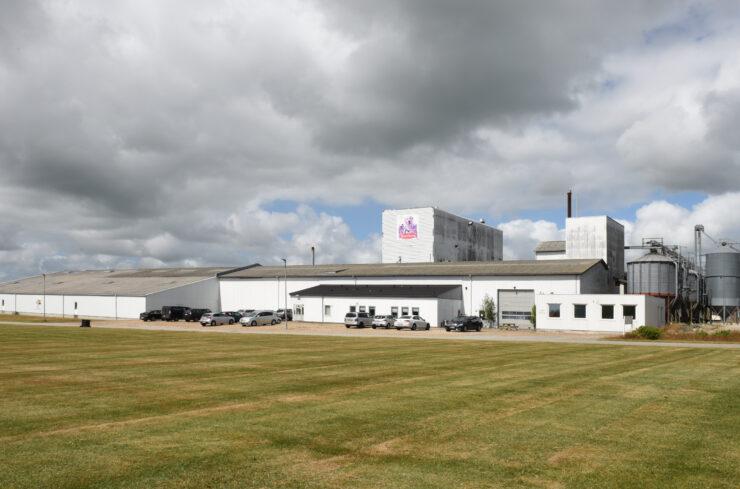 Market Information
Market Information
2+ MIN
17/01/2024
United PetFood announces planned acquisition of Vital PetFood Group
The takeover of the first plant in the Nordics is part of the planned growth strategy of United Petfood.
Vital Petfood Group is a pet food business with many years of experience in the production of dry & semi-moist food for cats and dogs.
The intended acquisition still needs to be approved by the Danish Competition Authorities.
"Thanks to the acquisition of Vital Petfood Group, our network of production sites will be able to offer flexibility and brings our production more and more closer to our customers also in the Nordics', according to the management of United Petfood.
'There has been a lot of consolidation within the pet food production industry during the recent years. We wanted to find a new owner to continue developing our petfood production in the long run. This divestment enables us to focus and further strengthen our branded businesses within Nordic Pet Care Group.
Being one of the leading European producers of pet food, United Petfood was an obvious choice of partner and new owner of VPG. We are confident that VPG will benefit from United Petfood's European customer footprint as well extensive experience with operating multiple pet food production sites. Furthermore, we expect United Petfood to be able to utilize VPG's strong position in the Nordics, and the Danish market, in particular.
We look forward to continue and expand the collaboration with United Petfood and keep on producing Best Friend products at the Ølgod factory for the years to come', according to Nordic Pet Care Group CEO Mika Holappa.
Source: United PetFood
 Market Information
Market Information
2+ MIN
16/01/2024
FEDIAF EuropeanPetFood announces Sonia Franck as New Secretary General
Prior to joining FEDIAF, Sonia Franck was Secretary General of IML Innovative Medicines Luxembourg, where she played a pivotal role in transforming the association.
Under Sonia's leadership, IML flourished, establishing a new five-year strategy, restructuring its management, diversifying revenue streams and elevating the association's visibility.
Expressing enthusiasm about her new role, Sonia Franck said: 'I am honoured to have been appointed by FEDIAF and I am looking forward to immersing myself in the pet industry and engaging with members. I am keen to further strengthen FEDIAF's reputation as the leading authority in the European pet food sector.'
Rosa Carbonell, President of FEDIAF, welcomed Sonia to the team: 'We are thrilled to have Sonia join our ranks. Her outstanding track record, coupled with her passion for pets, aligns perfectly with FEDIAF's mission. Sonia's expertise will be instrumental as FEDIAF continues its journey of collaboration with authorities, regulators, and academics to ensure Europeans have continued access to safe, nutritious, and high-quality pet food."
Sonia Franck joins the accomplished FEDIAF team, which includes Alice Tempel Costa Deputy Secretary General & Technical Director along with Aleksandra Prandota, EU Policy & Regulatory Affairs Manager plus external support from James Ramsay, Public Affairs & Strategic Communications Manager. I also extend my thanks to Alice, for her dedicated work overseeing operations at FEDIAF during the transition period.
With this robust team in place, FEDIAF is poised for continued success in representing the pet food industry throughout Europe.'
For more information please visit HERE or CONTACT US!
 Trends
Trends
5+ MIN
15/01/2024
Por María Candelaria Carbajo
Regenerative agriculture in pet food, a door towards a circular economy in our industry
More and more professionals and environmentalists are saying that continuing with the current production models is a path of no return toward the destruction of our planet. As an example, we can name Philip Lymbery in his book Farmageddon, where he argues that farm animals currently eat more than a third of the world's agricultural crops and waste most of them as feces and heat. What is regenerative agriculture? Agricultural production has increased in recent decades. However, the nutritional value of crops has been declining. According to a study from the University of Texas, the content of phosphorus, iron, calcium, protein, ascorbic acid, and riboflavin in crops has decreased between 9% and 38% compared to data taken between 1950 and 1999. The most likely reason for this is that over-tillage (the process of preparing the soil for crops) has killed off the microbes and fungi that make it biologically active, which increases crops' nutritional value. Regenerative agriculture is, first, a response to this type of problem. It is an agricultural production approach focused on managing land use to build healthy soils, promote biodiversity, and improve ecosystem services with the aim of producing more sustainable and resilient systems. Their practices seek to increase soil organic matter, reduce erosion, and promote soil health and fertility through cover crops, crop rotation, composting, reduced tillage, and agroforestry, among other techniques. This way, creating a more holistic and interconnected system that supports healthy and resilient ecosystems can improve productivity and profitability. However, its great potential lies in the fact that it has the great capacity to mitigate climate change by sequestering carbon in the soil and reducing greenhouse gas emissions from agricultural practices. Regenerative agriculture is an agricultural production management system that creates positive outcomes in soil health, ecosystem function, and biodiversity. Key benefits of regenerative agriculture If we talk about the benefits of regenerative agriculture, we must discuss its main goal, sustainability, but also its nutritional quality. • Emissions from agriculture still are one of the most difficult ones to reduce, and climate change is an international problem that, within our industry, we can begin to mitigate with this practice. • This agricultural production model can help improve crops' nutrient density, promoting healthy soil usage and reducing chemical fertilizers and pesticides. This would result in materials with a higher content of essential vitamins and minerals, which ultimately provides better quality raw ingredients for consumers. Very often, these are the cattle later used for food production, both for humans and pets, so the derived products will be healthier and more nutritious. The University of Washington carried out a study that demonstrated that crops from this production model have higher levels of nutrient density than those from standard models. Research shows that farms that use regenerative farming practices, such as no-till farming (planting crops without disturbing the soil beforehand), cover crops (working with vegetal species to improve soil health rather than for harvest), and rotations of various crops (changing the raw material grown on the same plot of land) produced crops with higher levels of vitamins and minerals than conventional farms. Mindset change: Short-termism is not the only way of analyzing a situation One of the main challenges we find when changing the current forms of production is the problems that can develop in the supply chain. When seeking to implement a change in the way of doing things, clashes will inevitably occur. In this case, wanting to have eco-conscious or sustainable business practices meets the costs of some of those practices right now, and how not only businesses but also consumers care about them. We also must consider that inflation and economic movements impact our industry, which makes many decision-makers prefer to wait or not risk too much. The key, in this sense, is to be able to generate collective conversations with the message that these changes may not necessarily be positive in terms of profit for companies or costs for consumers but that they are a bet to take care of the future, where we will see, at its best, the results of today's decisions. Another aspect to consider in the discussion is the number of points in the supply chain that go into creating a single final product. Furthermore, these differ depending on how the products and the value chain are built. The perspective with which we currently look at this issue is based on efficiency and profitability, but perhaps we should give up a bit of our attention on that focus to start thinking in terms of resilience. The biggest number of issues when implementing change arise around disruptions in those supply chains that ultimately create disruptions for the consumer, distributors, and vendors. What will happen 30 or 60 years from now if we can no longer produce today's raw materials because we make more decisions around profitability than environmental impact? To be able to bring the lens to the here and now is crucial. This way, by analyzing the present to achieve a better future, we will be able to set short-term profitability aside and choose measures and actions aligned with our companies' values. Thus, the short-term "benefits" have much more to do with building a brand and its ideals, and the positive, regenerative results are positioned a little more toward the future. Of course, every day more companies and organizations understand this perspective, but we need empirical science to confirm with data what really happens to the land and crops once regenerative agriculture is applied. Regenerative agricultura: it's time to take action Sustainability came to life when we realized that much of what we do in agricultural production, our value chains, and our products have a negative impact, depending on how we work and make decisions. The first proposal, that of sustainability, is focused on not creating a negative impact on our activities. On the other hand, regenerative agriculture proposes to go further and not only not produce it but also improve what we leave behind. As an industry, the possibility of addressing these problems as soon as possible is in our hands, if we want to protect all the agents involved in them, including our only planet Earth. By All Pet Food Source: All Pet Food Magazine
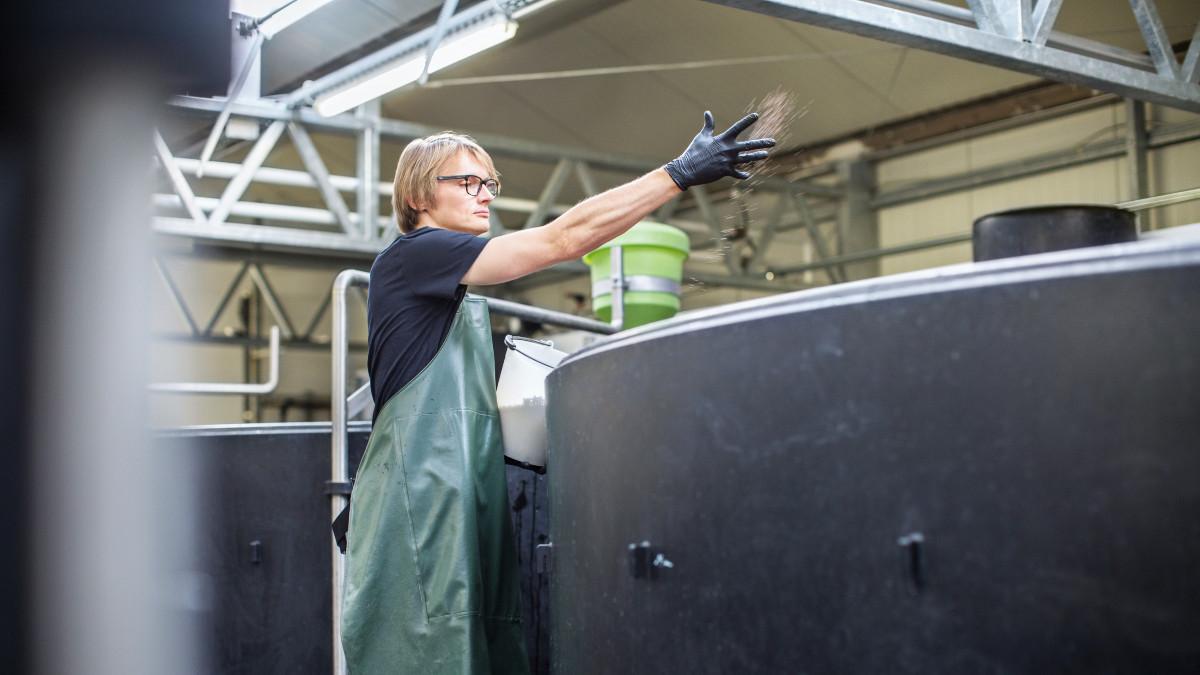 Market Information
Market Information
3+ MIN
12/01/2024
GEA explores potential of insect protein for animal feed
Since 2017, GEA has been supporting Future Green Solutions in carrying out research on processing black soldier larvae into nutritional animal feed by providing them with expertise, and a separating decanter. The Australian start-up believes the insect alternative to soy and fish protein and grains, could offer customers a sustainable long-term solution.
Traditionally, for the fish farming industry, animal feed manufacturers have focused on fish meal made from fish not used for human consumption, while for the livestock industry grains like corn are the main source of feed. However, as a result of caps on fishing, an unpredictable climate that is putting pressure on the supply and cost of grains and the demands of consumers, they are being forced to explore more sustainable sources.
According to Luke Wheat, CEO, Future Green Solutions, this is where protein rich insects like the black soldier fly, which have the potential to reduce carbon dioxide emissions and can be grown in small spaces, come in:
"We take farm waste and use the black soldier fly larvae to digest it. The insects are then processed into animal feed and what is left is used as a fertilizer. We're adding value to waste and then putting it back into the food stream as high value protein. The insects are produced in a controlled and methodical way that's not affected by changes in the climate."
Proven GEA technology enhances research
As part of the collaboration with Future Green Solutions, GEA supplied a three-phase separating decanter, which Dirk Sindermann, Head of Process Technology Renewables, Business Unit Separation, Separation and Flow Technologies, describes as the heart of the processing line:
"The decanter is responsible for separating the protein in the insects from the fat, which is one of the most important steps."
The decanter, along with the expertise provided by the Sales Support, Renewables & Process Technology Renewables teams in Oelde, Germany, as well as colleagues from GEA Australia, has allowed Future Green Solutions to go from a start-up conducting research to getting closer to the commercialization phase.
The decanter allows the company to produce a product that is low in fat and high in protein, making it much more valuable within the market.
High potential industry
For GEA, the collaboration is an opportunity to get a foot in the door in an industry which Dirk Sindermann describes as having big potential:
"The insect for protein industry is still very young and start-ups in particular are experimenting with different methods for the best possible production of proteins from insects. Through this collaboration, we can collect important data and gain experience."
"In the future, the production of insect proteins will take place on a large scale and due to our extensive and longtime expertise in recovering proteins from all kinds of sources – vegetable or animal based - GEA is the perfect partner for this growing industry.'
–Dirk Sindermann, Head of Process Technology Renewables at GEA.
Currently, Future Green Solutions continues to conduct trials and increase its production.
However, the company aims to open its first commercial facility within two years and is in talks about an agreement with a buyer that would keep several facilities running.
Why Australia?
The legislation around both the processing of insects for the food industry and the animal feed industry differs around the globe. GEA chose to partner with an Australian company because the country has more flexibility when it comes to feeding the insects farm waste or waste from canteens.
"Right now you cannot take the same approach in Europe, it's much more limited because of the legal framework. However, the Australian government has given Future Green Solutions a number of grants and is interested in pushing this type of development", says Dirk Sindermann.
For Luke Wheat, when looking to the future, he says GEA's involvement continues to be invaluable:
"We spent a lot of time on research and development of our process. But the key to moving forward has been GEA's separating decanter. My experience with GEA and GEA's people in Germany and here in Australia has been nothing but a pleasure. GEA understands the vision of where the insect industry is moving to and can see that it's a huge business opportunity.'
–Luke Wheat, CEO, Future Green Solutions.
Source: GEA Group
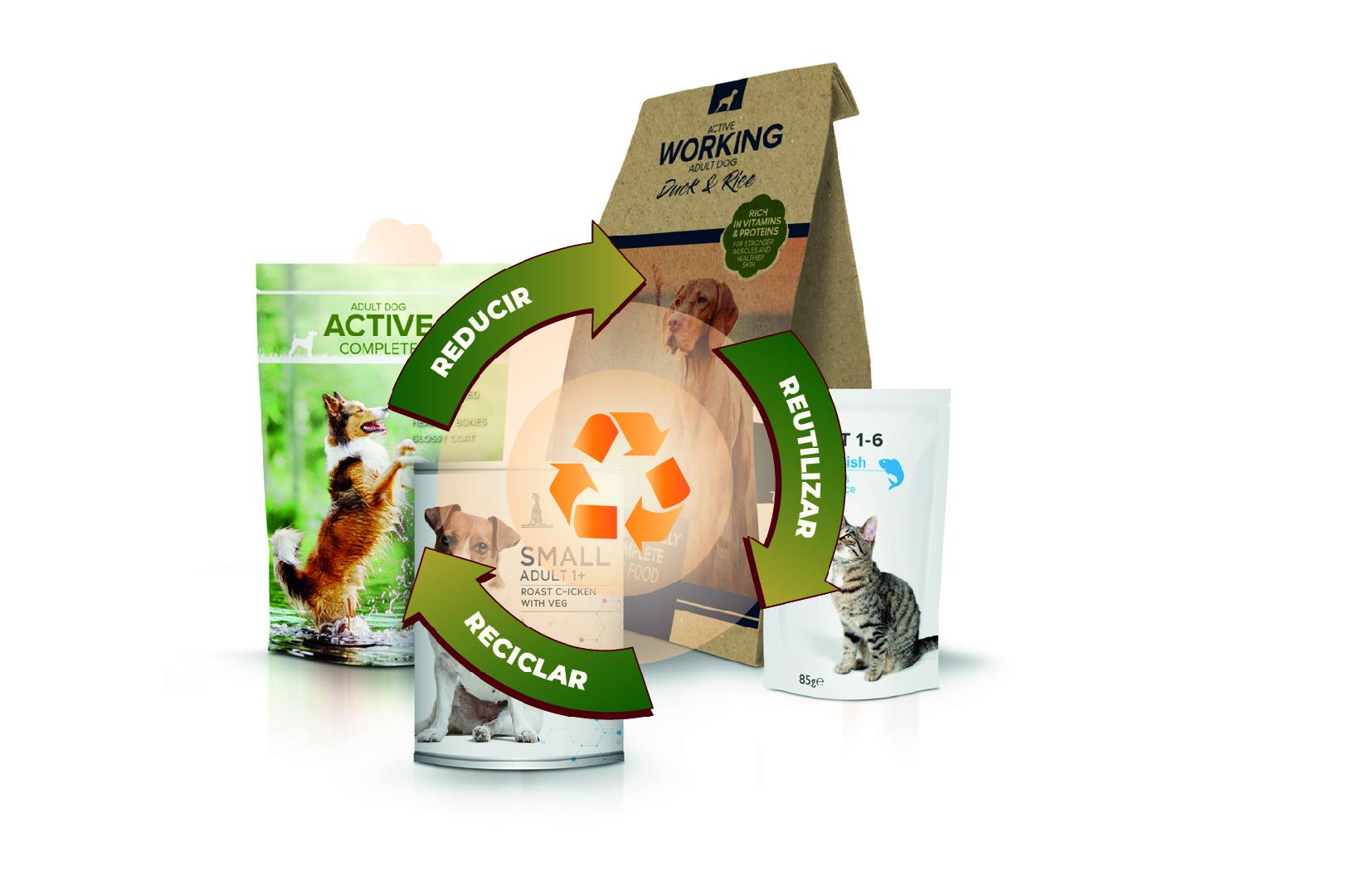 Trends
Trends
5+ MIN
11/01/2024
Por María Candelaria Carbajo
Circular Economy: The packaging challenges in the pet food industry
The truth is that the packaging that we had on the market 10, 20, or 30 years ago, when in many places the recycling system was just beginning to have relevance, has changed significantly, and there are strong indications that it will continue to do so. A few years ago, the same pet food companies began to analyze their packaging to find a way to achieve new, more efficient proposals in terms of sustainability and circular economy.
But what are we talking about when we talk about the circular economy?
A circular economy is an integrative approach that seeks to minimize waste generation and maximize resources reuse, recycling, and regeneration.
In contrast to the linear 'use and dispose of' model, a circular economy encourages the creation of closed systems where products, materials, and resources are kept in circulation for as long as possible. It promotes a systemic change from the traditional model towards a more sustainable and regenerative one.
The challenge, then, is not only focused in terms of sustainability but also on finding the most practical, functional, and attractive packaging for each product that hits the market.
The current situation in the pet food industry
Our industry has witnessed significant growth in recent decades, which has consequently led to an increase in the production of plastic packaging. These offer durability lightness, and practicality but also contribute substantially to environmental pollution and waste accumulation.
This market, like any other, generates waste and pollution on a daily basis, so trying to reduce it by working on one of the aspects with the greatest negative impact, the use of plastics in packaging, seems to be the most efficient option in the short and long term.
Often, there is a disconnection between what happens to a package at the beginning of its useful life when it is designed, and what happens at the end of its life. Currently, gaps of 5 and up to 10 years can be found between the environmental recovery situation for which a container is designed and what really happens with it when it goes on the market.
Considering the present context, not only of our industry but of the planet in general, it is undeniable to recognize that packaging plays an essential role in the food supply, protecting and maintaining the products from processing and manufacturing to distribution, handling, and storage to reach the final consumer.
Without efficient packaging, food distribution would be completely incompetent and, therefore, much more expensive. The functions of a food package, both human and pet eats, can be described as protection and containment, preservation, information, convenience, and service. These are, directly or indirectly, essential for physical, chemical, and microbiological food safety. In pet food, the requirements for a packaging system intended for a fresh, frozen, dehydrated, thermal, or aseptic processed product, in terms of barriers to oxygen, humidity, light, and so on, are all different.
Reviewing the international situation, it is possible and clear to identify the efforts different companies and organizations are already making to find alternatives to a problem that will only increase, such as:
Scientists at the Chinese University of Hong Kong (CUHK) have developed an edible, transparent, and biodegradable material with considerable potential for application in food packaging. The team is studying bacterial cellulose, an organic compound derived from certain types of bacteria that appears to be a sustainable, readily available, and non-toxic alternative to plastics.
Analyzing the waste generated by plastic pet food containers, Dow, a leader in materials science, Nestlé Purina, a leader in the safe food market for animals, and the Avina Foundation, a civil society organization focused on addressing the social challenges in Latin America, created the Pegada Limpa project. The proposal is to encourage the creation of a recycling chain for pet food containers, promoting the conversion of 300 tons of circular plastic and positively impacting the income of approximately 5,000 collectors in Brazil and Argentina.
Other alternatives under development focus on biogas energy. According to the U.S. Energy Information Administration, modern biodegradable waste can skip eons and go directly to energy production via landfill gas recovery systems. Gas from decaying organic matter can be captured and burned. Like natural gas, biogas contains mainly methane and carbon dioxide, both greenhouse gases if they escape into the atmosphere. However, when they are held trapped in a properly constructed landfill, that biogas can be used to generate electricity. In this case, the bioplastic waste of one person in the industry could serve as electricity for others.
What to focus on?
Active development of sustainable alternatives to traditional pet food packaging materials, such as biodegradable and compostable materials, edibles, and smart packaging technologies. By adopting these revolutionary options, the pet food industry can significantly reduce its environmental footprint.
Improving waste collection, classification, and recycling to minimize environmental impact.
Seeking collaboration between involved parties. Governments, pet food manufacturers, packaging suppliers, and consumers must work together to create a sustainable ecosystem.
Promoting sustainable change along with consumer education. We must encourage pet owners to make informed decisions and opt for sustainable packaging solutions to raise awareness of the benefits and environmental impact.
Asking governments for measures that facilitate the transition towards a circular economy in the pet food packaging industry, with, for example, mandatory recycling programs or ecodesign requirements.
Pet food packaging: pursuing a more circular economy for our industry
It is well known that industries need to be increasingly aware of the impact on the environment and the well-use of resources. And, even though it is true that society has evolved towards a way of consumption that can be considered unbalanced and disproportionate with very harmful materials to the environment, awareness is also needed about the importance of generating and promoting change.
Material suppliers and packaging producers, the recycling industry, food companies, the waste management sector, the public sector, and consumers are all collectively and individually responsible for environmental impact success.
Today, the circular economy presents a revolutionary opportunity for the pet food packaging industry to address the waste problem. By embracing sustainable packaging innovations, improving waste management practices, fostering collaboration, and educating consumers, we can create a more sustainable future for our industry.
By All Pet Food
Source: All Pet Food Magazine
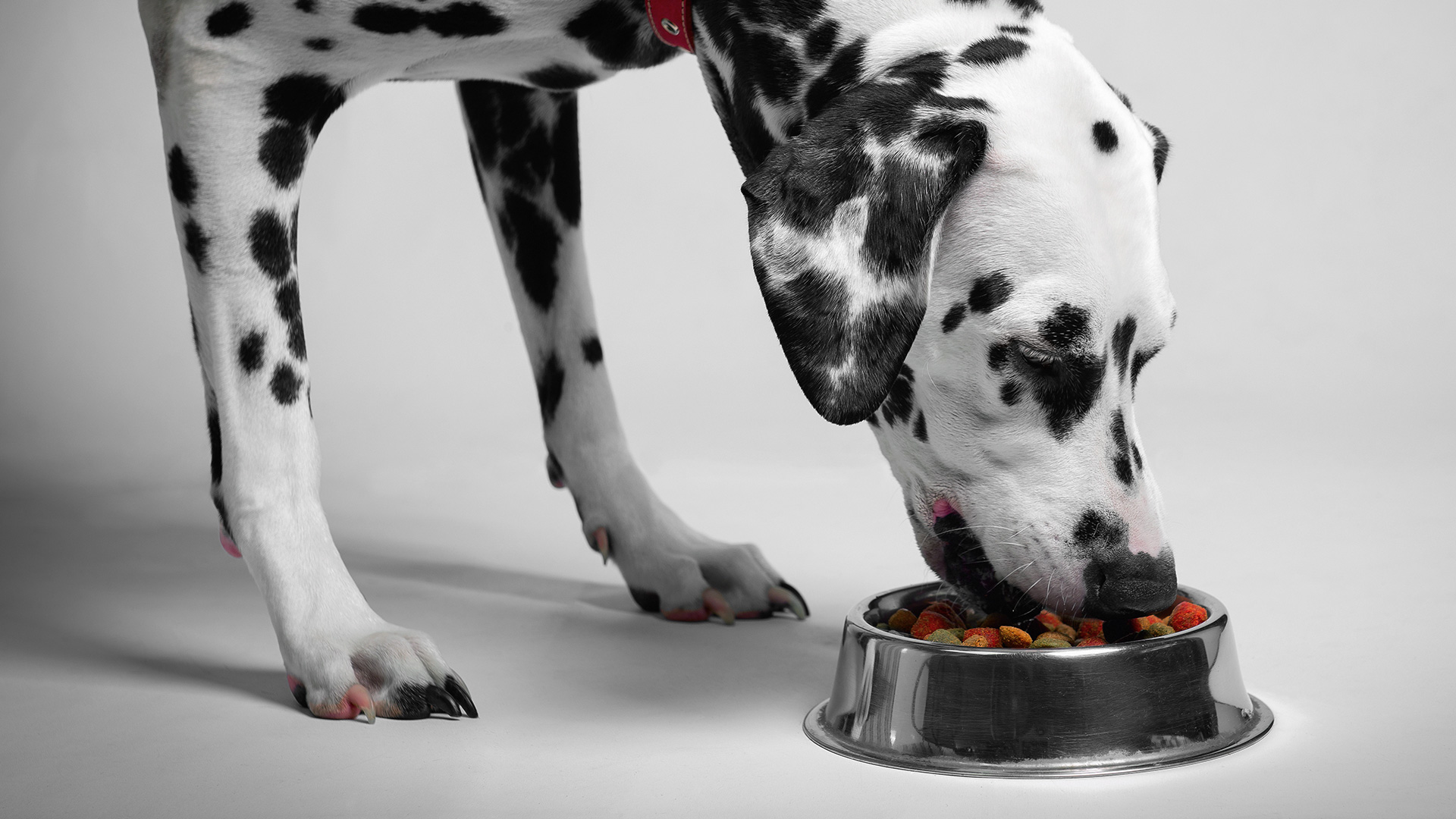 Market Information
Market Information
2+ MIN
10/01/2024
Category 3 Animal Fat - an important Pet Food Ingredient
Animal by-products (ABPs)
Animal by-products (ABPs) are materials of animal origin that people do not consume. When they do not enter the human food chain, in Europe, animal by-products are classified into three categories: Category 1, Category 2 and Category 3 depending on the source of the raw material and the intended use[i]. The pet food industry can only use Category 3 ABPs.
Category 3 ABPs are from animals declared fit for human consumption. These are ideal pet food ingredients due to their high nutritional and energetic value and should be used in the best possible way to preserve resources. Category 1 and 2 animal fats are forbidden for animal feeding for safety reasons but allowed for biofuel production.
The Vital role of Category 3 animal fats in Pet Food
Category 3 animal fats are essential raw materials for our pets' diets. They provide a source of energy and palatability but above all essential fatty acids.
They are subject to strict requirements on sourcing and collecting, animal origin materials processing, and control. Category 3 animal fats cannot be easily replaced as a pet food ingredient.
The EU & The Pet Food Industry's Waste Hierarchy
FEDIAF firmly believes that food, such as Category 3 animal fats, which is not intended for human consumption, should be repurposed according to the food waste hierarchy, i.e.: pet food (re-use animal feed) rather than energy (recovery) as indicated below[ii]. This sits well above energy use in the EU's own hierarchy of most-preferable options for food waste disposal.
The Pet Food Industry and the Future
Unfortunately, there is increasing pressure due to Category 3 animal fats being used in other sectors such as biofuels, which are much lower in terms of waste hierarchy. The Pet Food Industry will continue to communicate the importance of Category 3 animal fats in pet food. They are vital ingredients, which contribute to our circular business model and they cannot easily be replaced.
For further information:
REGULATION (EC) No 1069/2009 OF THE EUROPEAN PARLIAMENT AND OF THE COUNCIL of 21 October 2009 laying down health rules as regards animal by-products and derived products not intended for human consumption and repealing Regulation (EC) No 1774/2002 (Animal by-products Regulation)
LINK 1
LINK 2
Source: FEDIAF - European PetFood
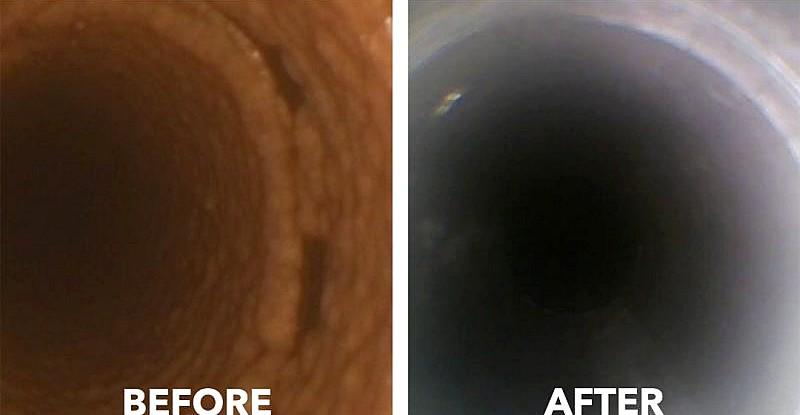 Manufacturing Process
Manufacturing Process
2+ MIN
09/01/2024
Waste to Energy Plant uses Scalebreak-Mp on Dump Condenses - Get Sparkling Clean Results
Within these facilities, preventive maintenance equipment is imperative to efficient operation. We are sharing a story from one of our customers that utilized Goodway's ScaleBreak to perform a chemical tube cleaning in a waste-to-energy plant on the East Coast.
In this plant, a loss of efficiency in the dump condenser was detected, initiating a cleaning work order for a scheduled shutdown. The dump condenser is one of the many pieces of equipment found in these facilities where preventative maintenance is imperative to efficient operation. These condensers recover excess heat generated by steam before it is uselessly put into the atmosphere.
During fluctuating steam loads, turbine start-up, turbine trip off, or bypass, the excess steam that would ordinarily be vented can be diverted to a dump condenser for recovery as they act as a standby and/or emergency heat sink for the mainstream
flow to the Turbine. However, when steam formed deposits accumulate on condenser tube surfaces, it creates an insulating barrier, which minimizes efficient heat transfer of the condenser.
The solution used was Goodway Technologies ScaleBreak-MP (Multi-Purpose), a citric based biodegradable descaling solution which dissolves 2.5 pounds of scale per gallon. Since the condenser tubes were stainless steel, the cleaning required a compatible descaling solution to ensure the stainless steel would not be damaged.
The condenser had a total volume of 3,854 gallons including waterboxes and piping. The scale thickness ranged between 1/16' of scale throughout the tubesheet. The decision was made to utilize 660 gallons of ScaleBreak-MP (a 17% mixture) and circulated for 8 hours.
The results were perfect as shown in the tube pictures, ScaleBreak-MP completely removed all the scale accumulations. Contact the experts at Goodway Technologies to ask how we can help your facility restore efficient equipment operation and reduce energy consumption.
By Goodway Technologies
Source : All Pet Food
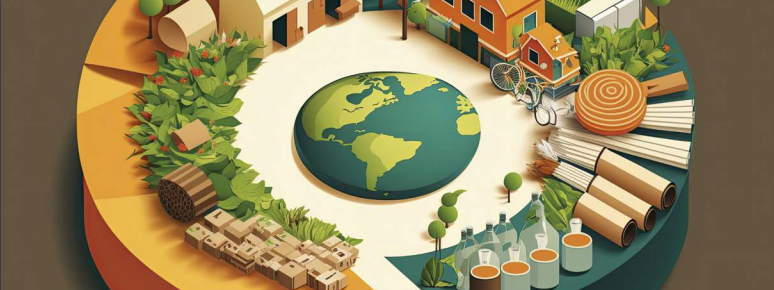 Trends
Trends
4+ MIN
08/01/2024
Por María Candelaria Carbajo
How do we create a circular food industry?
Focused on the pet food industry, this production model aims to minimize food waste as much as possible by maximizing the use of co-products, such as feeding livestock. Today it is already known that the optimal use of ecological remains requires animals that consume them with bodies capable of converting said remains into new food of animal origin. The proposal underlying the initiatives is to stop seeing certain by-products, such as meat ones, as 'waste' and begin to perceive them as a source of food or nutrients for certain animals or stages of a food production chain.
But what else can be done to minimize food waste and promote fully circular global food systems? Industry experts say it is about optimizing both information and supply chains. Various organizations are researching how to turn food waste into animal feed, as 14.7 million tons could be safely used for animal feed instead of going to landfills only in the United States.
In the case of pigs, for instance, they have a large stomach, which allows them to turn food by-products and waste into meat, while ruminants can turn grasslands into milk and meat. On the other hand, poultry is possible by-product converters in meat and eggs, but they require a high-quality intake to achieve it. Many environmentalists also see potential benefits in a circular food system that recycles potential waste products through livestock production.
For its part, the Food and Agriculture Organization of the United Nations (FAO) estimates that more than 13% of world food production loses between the production and wholesale stages of the supply chain, with an additional 17% wasted in the final sale instance to the final consumer. Additionally, food loss and waste contribute between 8% and 10% of global greenhouse gas emissions. 'We need to work on recovering resources for circular food production.'
'We need to work on recovering resources for circular food production.'
Booming Trends
Some aspects of circular feeding could be seen as in full swing, such as the rise of interest in insects as a source of protein, algae, and even single-celled organisms to recover an even higher percentage of nutrients from produce that might, otherwise, be lost.
The truth is that, in general terms, a great openness is easily perceived on the part of livestock producers and breeders in general, who tend to be predisposed to adopt any safe, effective, and affordable ingredient. Therefore, increasing the adoption of circular feeding systems depends, to a large extent, on factors such as accessibility.
However, nutrient recovery is not new in animal feed. Recycling waste from food processing and other industries to create feed ingredients is critical, and repurposed feed, which would otherwise be inedible to humans, provides a cost-effective alternative to traditional, resource-intensive raw materials. Working in circularity directly impacts on:
People
Currently, less than 2% of valuable nutrients are recycled in food by-products and waste. By reusing them as fertilizer, animal feed, or raw materials for textiles and plastics, we can spur innovation, open new ways for business, and reduce environmental damage. This shift towards resource utilization presents immense opportunities for sustainability, employment, and economic prosperity.
Nature
We need to redirect the industry toward regenerative food production. For that, we should re-evaluate what and how we grow. Currently, more than 75% of food derives from only 12 plant and five animal species due to agricultural industrialization. Failure to address this problem will have profound consequences both for human and planet health.
By diversifying farming systems and ensuring a symbiotic relationship with nature, we can mitigate these risks and foster a more sustainable and resilient future.
Weather
Minimizing food loss and waste is crucial. At all stages, from field to table, much food is discarded nowadays. If food waste were a country, it would rank as the third largest emitter of greenhouse gases worldwide! By addressing this issue, we can make significant progress in mitigating climate change and creating a more sustainable future.
It is about placing more and more emphasis on circularity in food systems to minimize waste and create a closedloop model where all resources are used efficiently and sustainably. In this paradigm, waste from one stage of the food supply chain would be reused as a resource for another, creating a continuous cycle of use and reuse.
'Unleashing the potential of commonly wasted resources is essential and urgent.'
Will we be able to create a circular economy for our industry?
The waste generated by society will decrease in response to climate change and food insecurity. For that, we need to start considering new alternatives.
Today, the pet food industry already belongs to a circular economy in which some leftovers from the human food industry are used. That is an efficient way of using the planet's resources. But more education is needed to highlight these efforts and improve circularity connections. If we work for it, future generations will count on an efficient and responsible animal agriculture industry concerning the environment and its resources.
By All Pet Food Magazine.
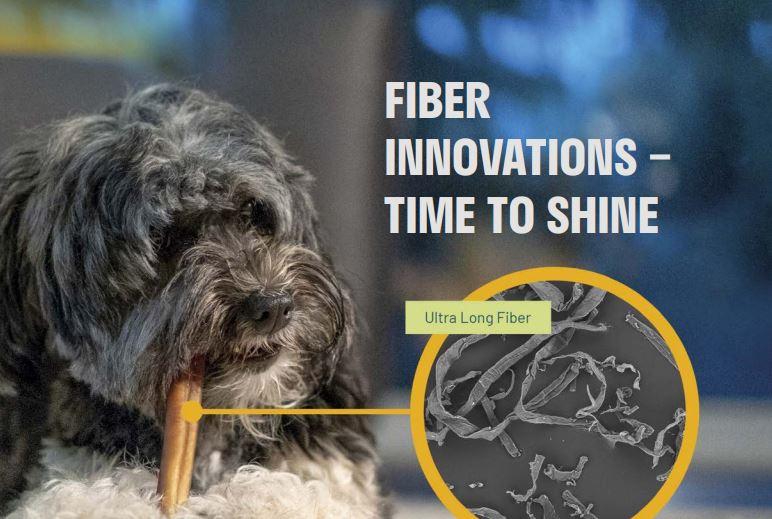 Vegetable Origin
Vegetable Origin
3+ MIN
05/01/2024
Fiber Innovations - Time to shine
Gut Health
Feeding complete foods rich in natural fiber is undoubtedly good for a pet´s health – a fact that is backed up by an array of scientific studies. As components of pet food and functional ingredients, specific fiber sources are primarily known for their ability to keep a pet´s digestive system healthy and balanced. Clinical studies have shown that supplementing dry and wet cat food with cellulose fiber helps to reduce typical hairball symptoms and to raise fecal hair excretion in cats.
Preventing obesity
As in humans, pet obesity numbers continue to increase year by year. According to the Association for Pet Obesity (APOP), nearly 60% of cats and 56% of dogs in the US are overweight or obese.
Weight management foods enriched with concentrated cellulose fiber can help to better control weight in cats and dogs without affecting food palatability.
Dental care
Oral health is another top concern among pet owners. Approximately 70% of cats and 80% of dogs develop some form of oral health problem by the time they are three years old. Clinical studies have proven that dental foods and snacks enhanced with specific cellulose fibers work more effectively to promote oral health in dogs when compared with fiber-free control products.
Standardized quality
Consistency, texture, and uniformity of pet food products are key quality attributes that are important to consumers but may be difficult to maintain. Given the variable nature of ingredients and the complexity of the manufacturing process, creating the right consistency can be a challenge for the manufacturer. Well-known binders such as spray-dried plasma (SDP), wheat gluten, or egg white/albumin commonly are used in so-called restructured meat products like chunks and in all 47 meat applications for their high swelling, water retention, and emulsion capabilities.
With a series of long-term pilot scale tests at their Technical Competence Center in Rosenberg (Germany), JRS demonstrated that a favorable cost-benefit is achieved by partially replacing conventional binders with functional cellulose fibers.
Regardless of the type of meat ingredient tested, replacing 2% SDF with 1% cellulose helps optimize the key parameters in a steam tunnel process and improves the textural parameters of the chunk before and after retorting.
Fiber as a tool
Fiber research is also currently underway into capturing product quality features in dry grain-free products with high meat inclusion in order to overcome typical extrusion challenges such as stickiness, reduced throughput, or poor product integrity.
Natural products for the future
As pet food trends follow our tastes and expectations discovering the functionality of simple, natural plant fibers is a key field of innovation.
These special natural fibers can help develop vegan meat alternatives giving the substitute products the right consistency and the desired structure. Moreover, many pet owners are exploring raw feeding with product convenience being a strong argument for consistent purchase. Natural plantfibers can make raw pet food firmer and more comfortable to handle while contributing to good digestion.
Energy Savings Opportunities
Each pet food and treat product format offers opportunities for cost savings and improvement in overall efficiency, especially during a global energy crisis, this fact is the focus of every entrepreneur. Specialized cellulose fibers have proven to make production processes more sustainable. In dry pet food, the drying time in production can be reduced by 50% making way for lower power consumption and relieving the bottleneck in drying, allowing for higher product throughput.
Tailored Fiber Solutions
With enormous demand across the pet industry for innovative products, manufacturers are looking for unique marketable, and functional ingredients.
Specialized plant fibers can be considered the pet food technologist´s toolbox for providing a wide range of functionalities across the whole spectrum of pet food products: dry to wet, frozen to sterilized, and even dietary supplements such as tablets.
As a leader in fiber products, JRS offers a comprehensive range of fiber ingredients that are suitable for all manufacturing processes and formulation options. Fibers that can help create sustainable pet food for better differentiation and improved pet health.
By: Dr. Astrid Bosse. JRS Petfood & Aquafeed
Source: All Pet Food Magazine
 Extrusion
Extrusion
1+ MIN
04/01/2024
Brian Streit has returned to Wenger as Senior Vice President–Innovation & Process Solutions.
After 15 years in milling and pet food manufacturing, Brian joined Wenger in 2012 as Director of Pet Food & Aquatic Technology and represented Wenger for 10 years. During those years, Brian became well known in the Pet Food and Aquatic Feed industries for his process knowledge and creative problem solving, helping numerous customers globally develop new products and refine their manufacturing processes. Now back with Wenger, Brian will work across multiple business units within the Wenger Group with intentional customer-centric strategy focused on the needs, wants & desires of our customer base. Please join us in welcoming Brian to the Wenger Group leadership team. Source: All Pet Food
 Extrusion
Extrusion
4+ MIN
03/01/2024
Raising the Bar in Pet Nutrition: ANDRITZ's Twin-Screw Extruders for High-Meat Formulations
The Rise of High-Meat Pet Food Pet owners today are becoming more mindful of what goes into their pets' bowls, and the high-meat pet food trend is a result of this growing awareness. High-meat pet food refers to formulations that contain over 30% fresh meat content. This demand stems from a desire for better digestibility and premium nutrition for pets. However, this shift presents its own set of hurdles, particularly in achieving the right cooking temperatures due to the moisture and fat content in raw animal ingredients. Challenges in High-Meat Pet Food Production Creating high-meat pet food formulations comes with unique challenges. The variability in raw animal ingredients complicates the manufacturing process, demanding careful handling to maintain consistency. As Niels Bengt, Sales Director KA, LATAM at ANDRITZ, explains, "Dealing with the diversity of raw animal ingredients requires innovative solutions to ensure uniform processing, which is vital for preserving the nutritional quality of the final product." As a result, the production of high-meat pet food often requires the employment of twin-screw extruders, known for their superior capabilities compared to single-screw counterparts. These extruders offer advanced kneading and mixing capabilities, pivotal for upholding the desired texture in high-meat formulations. Yet, the pursuit of elevated throughput rates while adhering to compact machine dimensions adds an additional layer of complexity to the manufacturing process. Striking the Balance Between Efficiency and Nutritional Integrity In the face of these challenges, ANDRITZ's twin-screw extruders, ExTS 616 & 718, emerge as a transformative solution for high-meat pet food production. Specifically designed to excel in extruding pet food enriched with elevated meat inclusion ratios, ANDRITZ's twin-screw extruders ensure optimal starch utilization, affording unparalleled formulation flexibility and optimized feed conversion ratios. The synchronized, high-shear twin screws guarantee the complete material discharge, minimizing waste and expediting recipe transitions. "Our twin-screw extruders are crafted to tackle the intricacies of high-meat pet food production. We are resolute in our commitment to efficiency while upholding nutritional integrity. ANDRITZ's twin-screw extruders stand as the definitive solution that not only meets but surpasses the challenges of high-meat pet food production," says Niels Bengt, Sales Director KA, LATAM at ANDRITZ. "Our approach is centered on achieving a harmonious synergy between the seamless functioning of our machines and the preservation of the vital nutrients within high-meat formulations. With precise control over cooking temperatures and meticulous handling of diverse ingredients, our twin-screw extruders stand as a testament to our dedication to delivering pet food that not only excels in quality but also upholds the nutritional essence of each ingredient," Niels Bengt adds. This distinctive approach has been expertly crafted to tackle head-on the intricate challenges that arise from incorporating raw animal ingredients into recipes. By providing pet food producers with meticulous control over cooking temperatures, ANDRITZ's solutions effectively address the nuances associated with different ingredients, ensuring that each element is handled appropriately. This attention to detail serves as the linchpin for safeguarding the nutritional richness present in high-meat pet food formulations, ultimately resulting in a final product that not only offers exceptional palatability but also remains an optimal source of nourishment for our loyal animal companions. From Conscious Consumers to Circular Economy Moreover, as societies worldwide increasingly embrace environmental consciousness, consumer interest in the food supply chain has surged due to growing sustainability concerns. Transparency in sourcing and production is no longer sufficient; consumers now demand an understanding of how food production impacts the planet. This scrutiny extends even to pet foods and treats. As the world transitions toward a circular economy, driven by the urgency to mitigate greenhouse gas emissions and reduce landfill waste, it's essential to recognize the role of rendering as a form of recycling. Rendered ingredients include proteins sourced from animal muscles, organs, and bones not suitable for human consumption but perfectly safe for animals. This holds particular significance as approximately 50% of an animal is unsuitable for human consumption, and without rendering for alternative uses, this portion would go to waste. Therefore, integrating fresh meat into pet food aligns with the principles of the circular economy, promoting resource efficiency. ANDRITZ's twin-screw extruders play a significant role in advancing this circular economy in the pet food industry. By efficiently processing raw animal ingredients and minimizing waste, ANDRITZ machines contribute to a more sustainable pet food production process, while maintaining the nutritional quality that pets deserve. The Way Forward: Nourishing Pets and the Planet Simultaneously As the pet nutrition industry evolves, the high-meat pet food trend poses challenges that require innovative solutions. ANDRITZ rises to the occasion, ensuring efficient processing of fresh meat ingredients while upholding their nutritional value. Beyond efficiency, ANDRITZ's twin-screw extruders exemplify a commitment to sustainability, ushering in a more environmentally conscious era for pet food manufacturing. Niels Bengt, concludes, "Our solutions not only address the demands of the pet food industry but also contribute to a more sustainable future. By providing highly efficient machinery that produces high-quality, high-meat pet food, we're meeting the needs of pets, their caring owners, and our planet." In the future, ANDRITZ aims to continue pushing the boundaries of innovation to further enhance pet food production. "Our innovations are not just products; they are promises of a brighter, more exciting future for our customers." Source: All Pet Food Magazine
 Market Information
Market Information
1+ MIN
02/01/2024
United Petfood makes strategic acquisition to support wet pet food production
The Dutch producer offers expertise in high-quality meat chunks in gravy wet food for dogs and cats, which the company distributes worldwide. United Petfood is expected to benefit from De Haan Petfood's 60-plus years of experience in wet pet food production. According to United Petfood, the acquisition 'opens up new avenues' for the company to help it meet growing demand for wet formats. De Haan Petfood, located in Nieuwkoop, the Netherlands, specializes in the production of wet dog and cat food in the form of high-quality meat chunks in gravy. With over six decades of experience in the production of canned wet food for worldwide export, the United Petfood said it brings significant expertise to its family. 'We are pleased to be joining the UP family and we are convinced this will allow us to consolidate our business success. On a commercial level we can pool our resources while existing UP clients get access to an experienced manufacturer of canned wet food. We will also be able to share our know-how and experience on an operational level. Following the takeover Eddy Nijhof will remain in place as the site's Managing Director, guaranteeing service and continuity for existing business relations, according to De Haan Petfood. The purchase of De Haan Petfood follows several other acquisitions by United Petfood, including its acquisition of Turkish producer Lider Pet Food in February. by United petfood Source: All Pet Food
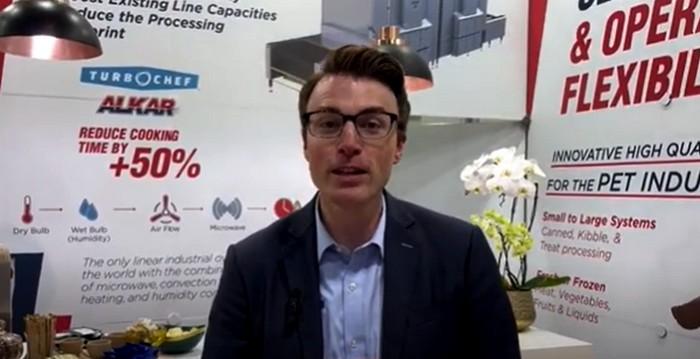 Interviews
Interviews
1+ MIN
29/12/2023
Interview to Zach Bearson- Cozzini Marketing Director
Zack Bearson took his time to introduce the company and equipments as well as its solutions for the pet food sector and producers, in Latin America. Cozzini has a geat reputation within the sector and are currently market leaders in pet food systems, badging and delivery of ingredients and many other services like emulsion preparation equipment. Please don´t miss the opportunity to know more about this exciting company and its novel solutions intended for pet food producers. By: All Pet Food
 Interviews
Interviews
3+ MIN
22/12/2023
Interview to Vanni Antonello - Application Manager at GEA Group
Under what premise and purpose does GEA currently work and design products and services? At the heart of GEA's services and products lies the customer, with their expectations, needs and product. That is the main goal when designing our systems and, in so doing, we set ourselves apart from other market players while keeping a special focus on the following: Design: Utmost flexibility: in today's rapidly evolving market, it is more necessary than ever to be able to rely on highly flexible systems and machinery designed to meet our customers' current and future needs. A single technology partner: having a single contact person during the key stages of the process, from handling raw materials to packaging, involves working with specialists who can solve the various issues that arise and transfer their knowledge to their customers' staff. Tailormade approach: customers have various requirements, but by drawing on its expertise in designing and manufacturing systems and machinery, GEA can meet customer demands promptly and efficiently. Service: The extensive network of GEA enables our sales staff and specialist technicians to support our customers at all times and provide assistance at short notice. In addition, we offer customer service packages such as: Health check: one of our specialized technicians will visit the plant twice a year to inspect its condition and maintenance, check operational efficiency, and recommend which spare parts need to be ordered depending on machine conditions (in this day and age, unplanned downtime is a cost that must be absolutely avoided). Differentiating service offering with various packages: bronze, silver and gold, with an increasing number of services that can be agreed with the customer in order to keep the costs of routine maintenance and, at higher levels, extraordinary maintenance under control. According to your vision and experience, what is the key to a successful process in pet food? Reliability, sustainability and automation. These three elements are what make the difference in a competitive market such as the Petfood market. Reliable machinery, which enables customers to obtain quality product without production downtime to avoid profit loss. Sustainability, which is to be achieved by using energy-efficient systems. And state-of-the-art automation, which allows the parameters of the system to be promptly adjusted in order to maximize its output. How do you see medium-term development in the pet food processing area? Flexibility will become increasingly crucial for making strategic choices regarding products and, consequently, technology as well. The petfood market is increasingly influenced by trends that are driven by taste preferences as well as dietary and medical/care requirements. Pet food can no longer be considered merely as food, but rather as a supplement to medical treatment that can be used to address animal health problems, and is highly recommended by vets. What proposals will the company present in terms of innovation in 2024? When it comes to technological advances, GEA focuses not only on researching new machinery but also on solutions that can improve the current state of the art, so that we can equip our customers with the means to keep up with the latest market trends. With this approach in mind, GEA is making major investments in sustainability by developing energy-saving solutions that consume less water, as well as in automation by developing sensors which, by incorporating artificial intelligence, will allow customers to make their systems more productive and autonomous. Source: GEA Group
 Market Information
Market Information
1+ MIN
21/12/2023
Northwind Receives kansas Department of Commerce award
We are delighted to announce that NorthWind Technical Services has been named a Northeast Region Award of Merit winner in the Manufacturing/Distribution category for the 2023 To the Stars: Kansas Business Awards. The recognition was presented by Ernie Beaudet, Northeast Business Development Project Manager. The To the Stars Competition, an annual event hosted by the Kansas Department of Commerce, recognizes businesses for their exceptional contributions to the Kansas economy and local communities. Ernie Beaudet highlighted NorthWind's outstanding achievement, noting, 'In the Manufacturing/Distribution category, NorthWind Technical Services stands out as one of the 37 Merit winners statewide. Out of 4,470 businesses, this places NorthWind in the top 1% of Manufacturing/Distribution enterprises in the State of Kansas.' Mike Bosworth, CEO of NorthWind, expressed appreciation for the recognition, stating, 'Being acknowledged by the Kansas Department of Commerce is a testament to our hard work and commitment. These awards reinforce that we are consistently moving in the right direction, always striving to deliver excellence.' by Northwind Source: All Pet Food
 Market Information
Market Information
3+ MIN
20/12/2023
Por Candela Bonaura
Talking about 'numbers': how much does it 'cost' to own a pet?
When deciding to adopt or include a new member in the family, considering the pet in the family economy is important. But why? Because pets are living, sentient beings with needs to satisfy. We must understand that pets depend 100% on their guardians. It is not common to talk about this topic with guardians during one or more vet appointments, but we could turn it into a healthy habit, which will allow them to have orders and a monetary fund for the care of their pets, and to foresee situations that may require a greater demand, such as an emergency, hospitalization, complementary studies, or treatment. Bills to consider: Food can be homemade, commercial, maintenance, functional, or therapeutic. Treats such as snacks or candies should also be under this category. Health, which may contain insurance, includes 'planned' expenses such as check-ups, maintenance of the complete health plan, unforeseen events, basic or complex complementary studies, hospitalizations, and surgeries. Cleaning or leisure can include ethologists, trainers, walkers, baths, spas, toys, scratching posts, and gyms. These items, although they might seem like it, are no less important. Being able to provide pets with all their needs is fundamental for their health, especially if we think about the impact of stress, and the large number of diseases that originate in its presence, especially as cats are very predisposed to suffer from it. These expenses make up the list of must-haves to guarantee pet well-being. Prices will depend on the quality of the items or the particular needs of the dog or cat. Beyond the expenses, the unconditional love that our pets and patients provide is invaluable, so giving them the love, time, and care they need to prevent diseases, preserve their health, and improve their life quality is priceless and fundamental. In recent years, there has been enormous interest and awareness generation about our impact on the planet, which is why sustainability and circular economy are also considered in the veterinary field. Sustainability represents a way of living in balance with our environment and preventing a shortage of resources that could put life at risk. The circular economy is a production and consumption model that involves sharing, renting, reusing, repairing, renewing, and recycling existing materials and products as much as possible, thereby generating added value. It proposes a new look at our way of producing, consuming, and disposing of to optimize the planet's resources and produce less and less waste. It is an alternative model to the linear economy. It proposes a concept of the seven R's of redesigning, reducing, reusing, repairing, renewing, recovering, and recycling. To collaborate, some alternatives and actions can be carried out regarding our pets. For example: pet food containers, insect protein-based foods, etc., are some of the main sources. In the last aspect, there is still a lot of research on its amino-acid composition and the medium-term impact on pets' health. More than eight million tons of plastic end up in the oceans every year, according to the environmental organization WWF. That's the reason why the Clean Footprint project was born: to close the recycling cycle of these packages. This circularity initiative develops and implements solutions that act on the main challenges of each stage of the chain: from 100% recyclable or reusable packaging development to promoting the correct disposal of packaging by consumers and the incorporation of post-consumer plastic in new products. The important thing is that a social conscience has been generated that leads us to take greater environmental care and the impact of living in it, and pets do not escape this! Did you know about these topics? Do you have any ideas about it? Source: All Pet Food Magazine
 Market Information
Market Information
6+ MIN
20/12/2023
VNU joins with VICTAM to push investment in animal feed and complete animal health businesses, through VICTAM Asia event and Health & Nutrition Asia 2024, this March !
VICTAM Asia and Health & Nutrition Asia are two leading trade fairs organized by two organizers specializing in the livestock industry . The event is scheduled to take place from 12-14 March 2024 at the BITEC Bangkok Exhibition and Convention Center, presenting a trade negotiation forum for the animal feed production industry. Complete animal health and nutrition Within a special interview event at The PARQ building, Bangkok, we were honored by the organizing committee to come and talk on the topic 'The Future of Animal Feed & Health' , trends in animal feed and animal health in the future. Ready to reveal information about this year's event, special highlights, and the collaboration between the two organizers to create a platform for showcasing the most influential products for the animal feed and animal health industries in Asia. Along with giving the media group an opportunity to ask in-depth questions about issues of interest. In-depth look at animal feed business trends at VICTAM Asia Mr. Sebas van den Ende, General Manager of VICTAM International, representative from VICTAM Asia , said: "With the success of 2022 as the world's leading trade show and conference for the animal feed manufacturing industry, presenting innovations in an area of 5,800 sqm., with 231 exhibitors from 33 countries around the world. We welcomed 6,121 attendees from 64 countries around the world, with 21 percent being real buyers in the industry." According to reports by Meticulous Research®, Future Market Insight, and Mordor Intelligence™, the global animal feed production and processing market is currently expected to grow at a compound annual growth rate ( CAGR) of 4.2 percent, reaching USD 23.1 billion in 2023, and expected to reach USD 34.8 billion. US dollar by 2033, which such growth It is driven by many factors, such as increased trade in the livestock sector. The increasing world population has resulted in increased demand for animal products. It is high quality food. High security Has high nutritional value There is a high level of aesthetics in consumption, causing manufacturers to procure modern machinery and technology to meet market demands. Asia Pacific is the fastest growing market and dominates the global market with the largest number of animal feed manufacturers and machinery suppliers . This is due to increased economic growth and rapid urbanization. From such information, VICTAM focuses on and follows future trends to invite entrepreneurs and real buyers in the industry , along with highlighting through product exhibitions and seminars in 2024 under the theme Progress. Technology: Animal Feed Production and Processing; Asia's Aquatic Feed Industry: Innovation and Sustainable Growth; Advances in Technology Production and processing of rice - flour - grains , and sustainability theme, along with leading exhibitors in the industry that are ready to match business such as Ag Growth International, Kasetphand Industry, Tietjen Verfahrenstechnik etc. Find every solution in the animal health and nutrition business for every farm at the Health & Nutrition Asia event Mr. Tom Faulkner Senior Project Manager VNU Europe, said: "Health & Nutrition Asia ( Health & Nutrition Asia ) is the trade show for the animal health - animal nutrition industry in Asia. Focuses on business negotiations between related parties in Asia. Organized by the VIV worldwide team , the same organizers as VIV Asia , Asia's number 1 trade show for products and technology for the livestock industry, Health & Nutrition Asia showcases innovations in nutrition, pharmaceuticals and high-tech animal health solutions. as well as many academic seminars from both the public and private sectors. Packed throughout 3 days between 12-14 March 2024 at the BITEC Bangkok Exhibition and Convention Center, organized together with VICTAM Asia ( Victam Asia ) for the 2nd time." For the investment sector in the business of animal health care and nutrition, livestock farms are the starting point for the production line. The introduction of animal care technology is extremely important because it directly affects the quality and well-being of farm animals. Whether it is feeding animals through an automated system to get the right amount of nutrients / Breeding and genetics to trim, add and strengthen the breed / Food additives and feed ingredients for replacement and supplementation Nutrients necessary for quality growth / Advanced technology in animal health / Scientific laboratory equipment / Pharmaceuticals, drug product processes for animals and veterinary medicine, etc. According to the report of The International Market Analysis Research and Consulting Group, the market size of the global animal health industry is discussed. The market is expected to reach a value of USD 37.8 billion in 2023 and the market is expected to reach a value of USD 49.5 billion by 2032 , growing at a CAGR of 2.9 % during the year 2024-2032 within this period It is expected that there will be more new companies in the industry. which is in line with market needs Investment portfolios are consolidated and expanded. Including business cooperation to drive the market that is continuously growing. Industry leaders or large companies have also begun to adopt a variety of cutting-edge innovations to address evolving challenges and improve the industry. Focusing on pets and livestock at the event Health & Nutrition Asia and VICTAM Asia. Ready to present manufacturing companies from many countries, exporters, distributors. Many experts and investors from across Asia gathered in one place. Ms. Panadda Kongma, Director of Agricultural Business - Livestock and Operations Department of VNU Asia Pacific, added, "The two organizers have joined forces to create a unique trade negotiation platform this time to create opportunities for those involved in the business sectors of animal feed, nutrition, medicine, genetics, animal health treatment, veterinarians, etc., all of which can be discovered at Health & Nutrition Asia, while technology production of animal feed business will be presented at VICTAM Asia, the only trade show for professional players in the animal feed production and animal health care industries in the market with the fastest growth rate, such as the Asian region Visitors will meet 250+ leading international entrepreneurs. 35+ seminars and seminars , and we are ready to welcome key visitors and buyers from all over Asia." In terms of knowledge within the VICTAM Asia event and Health & Nutrition Asia 2024 presents seminars for those interested in and working in the animal feed and animal health industries. With cooperation from the media association that comes to present and update new trends in the industry. From experts both within the country and from various countries such as Monitoring and Prediction in Factory, Perendale Publishers Ltd that presented a seminar on the topic about Flour milling for animal and aquatic animal feed , Kasetsart University that presented a seminar on the topic 2 nd Animal Genomics and Bio resource for ESG & SDG, Watt Global Media with topics related to strategies for creating production for animal feed , AFFIA Association that is ready to present new knowledge about future insects and animal nutrition Including other associations and organizations such as Department of Fisheries , World Poultry Science Association (WPSA), GMP+ International, IFTC, Korean Animal Health Products Association (KAHPA) and Veterinary Association of Thailand. under royal patronage who are ready to share knowledge and discuss with all visitors to drive sustainable development of the livestock sector For those interested in attending the exhibition, please contact us! For those interested in visiting in groups (10 people or more), please contact Ms. Pitchapa Panmanee - Marketing Communications Department (VNU) Tel.: 02-1116611 ext.: 331. For more details about the event and registration, please visit the website . Media please contact Mr. Chaiyachet Phak Poonphon - Marketing Department, Expolink Global Network Co. Ltd. Tel. 096-931-4578. Mr. Saengthip Tae Chapatiphandee - Marketing Communications Manager, VNU Asia Pacific Company. Tel.: 02-1116611, ext.: 330. About VICTAM Asia The world's leading trade show and conference for the animal feed manufacturing industry. Focused on presenting technology and machinery for producing animal feed. Including machinery for producing and processing rice, flour, and grains, as well as covering important and necessary accessories and systems used in animal feed mills, organized by VICTAM Corporation. About Health & Nutrition Asia Trade show for the animal health-animal nutrition industry and animal feed in Asia for business negotiations. Organizers of VIV worldwide focus on presenting innovations in nutrition, pharmaceuticals, and animal health solutions with advanced technology. Source: VICTAM Asia
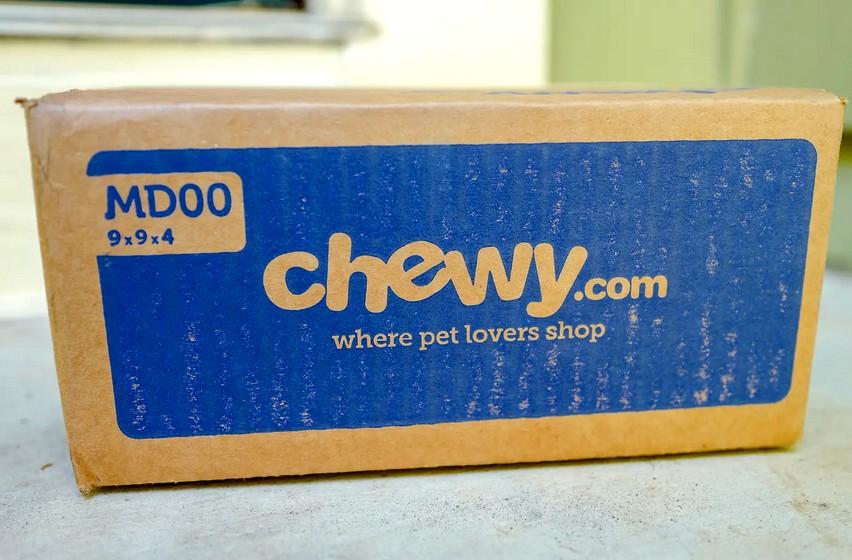 Manufacturers
Manufacturers
2+ MIN
19/12/2023
Chewy Receives FDA Warning for Illegally Selling Pet Drugs
The Food and Drug Agency (FDA) is warning nine animal care companies against using illegal antimicrobials in their products, according to a notice on Thursday.
These antibiotic products for animals such as aquarium fish and birds are illegally being sold over-the-counter, and are only legally accessible through a prescription from a veterinarian. They contain amoxicillin, penicillin, tetracycline, and erythromycin, among other drugs.
Among the companies the FDA named is Chewy, a popular service that sells pet supplies, food, treats and toys online. It saw tremendous success over the COVID-19 pandemic, with some of that momentum carrying on. The company reported more than $10 billion in revenue in 2022.
'These unapproved animal drugs pose a two-fold risk to public health,' said Tracey Forfa, J.D., director of the FDA's Center for Veterinary Medicine. 'First, these products haven't been through the FDA drug review process, and we don't know whether they're safe or effective, or even contain what the label states.
By using unapproved drugs, not only does an animal owner risk further harming their pet, delaying proper treatment may also contribute to growing antimicrobial resistance, along with the harm that comes from delaying proper treatment.
'Second, inappropriate use of medically important antimicrobials contributes to the development of antimicrobial resistance, which affects both human and animal health,' Forfa continued.
The notice says that they are only accessible from a veterinarian because they have training in what drugs will be best to treat a specific problem in an animal, and 'judicious use of antimicrobials reduces the risk of developing antimicrobial resistance and helps ensure better health outcomes.'
The FDA is advising people using any of the products mentioned in the warning letters to get rid of them. The companies have 15 days to respond to the warning letters with information about how they will address the FDA's concerns. Along with Chewy, companies that have received warnings from the agency include:
American Aquarium Products
Aquanest Biotic
Aquarium Pharmacy LLC
California Veterinary Supply
Kraft Drug
Midland Veterinary Services LLC
Silver Lease LLC
Valley Veterinary Clinic LTD
by The Messenger
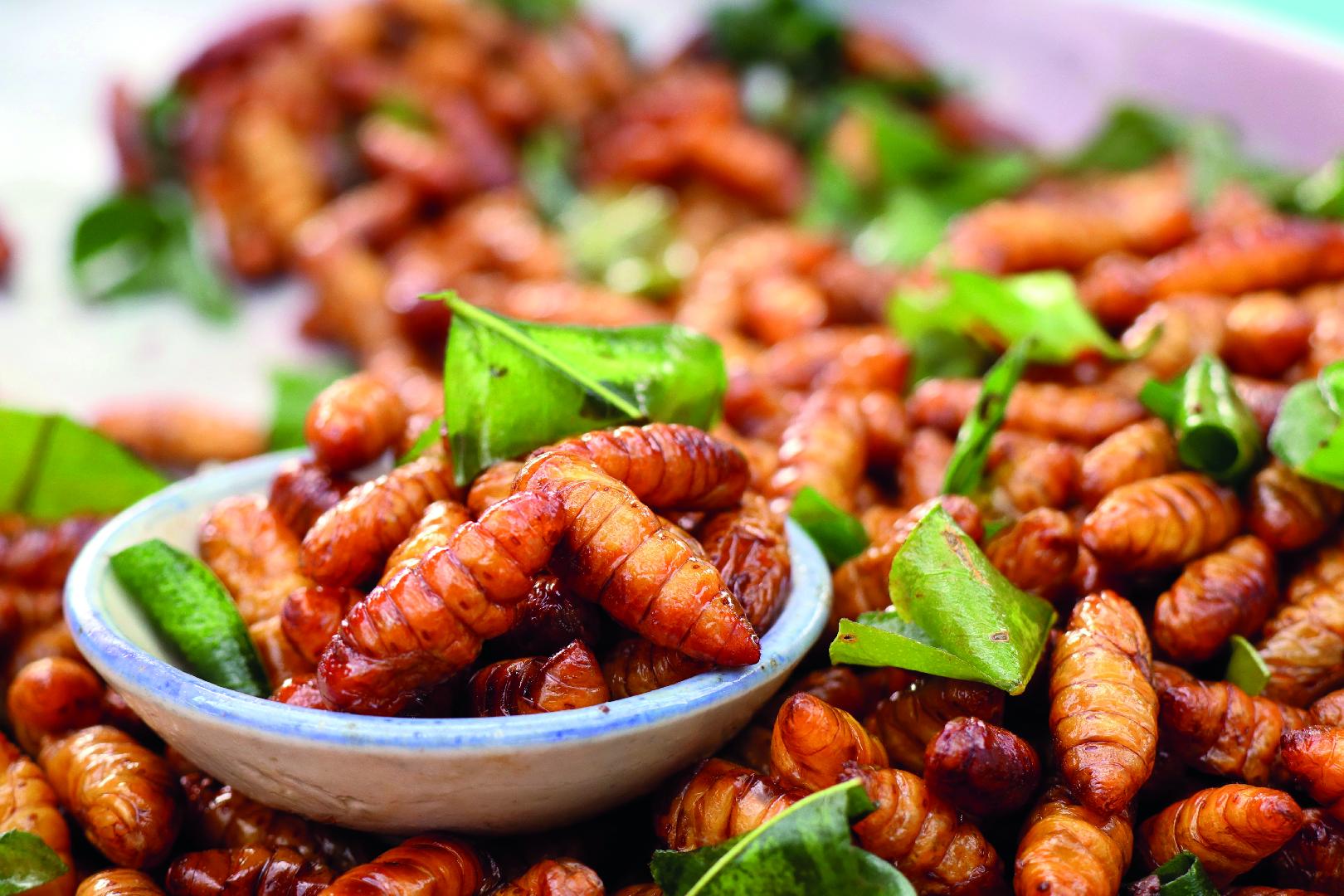 Trends
Trends
3+ MIN
18/12/2023
Por María Candelaria Carbajo
Alternative pet food, gaining ground in pursuit of a circular economy
Why consider insects as a possible protein source for pets? Insect-based pet food uses, as the name suggests, insects as the primary source of protein, rather than beef, poultry, or fish. Global human population growth is projected to reach 10 billion people by 2050. In turn, pet ownership is also increasing, with a current estimation of more than 1 billion pets worldwide. Consequently, there is a rapidly increasing global demand for protein as a nutrient source. In addition, due to pet humanization, there is some concern about the direct competition between food production for both living beings. Today, food consumption by the world population of dogs and cats represents about a quarter of the environmental impact of production. In fact, in 2020, a study found that global greenhouse gas emissions from pet food were equal to those of the 60th highest-emitting country in the world. Knowing these numbers, it is imperative to prioritize both global food security and environmental impacts related to food production and consumption. Insect-based protein is presented as a great sustainable alternative with high nutritional quality to develop in the pet food sector. Some of the most used insects currently in this type of proposal are black soldier fly larvae, crickets, and mealworms. These insects are rich in protein, healthy fats, and essential minerals, making them an excellent source of pet nutrition. Most pet food brands are developing this type of pet food focused on dry dog food, followed by the wet food sector, also for dogs. The insect-based alternatives present for cats are considerably fewer. Advantages of insect-based pet food production Some of the reasons insects are increasingly being incorporated into new pet food recipes and formulations have to do with the nature of their primary production: Insects have a very high feed conversion efficiency and can be raised in organic side-streams, as plant by-products of human food production systems, thus recycling low-value food waste into high-value protein and fat. They require significantly less water and produce fewer carbon dioxide and ammonia emissions, compared to traditional protein sources. They need much less physical space. For example, commercial insect-rearing facilities using vertically integrated farming techniques can produce 1 ton of insect larvae every two weeks on 20 square meters of land. In addition, insects, depending on their species, can be a great source of essential nutrients, including amino acids, fatty acids, minerals, and vitamins. Current consumers' perception One key factor to inserting this type of protein into the market, in addition to scientific research and development, is nothing more and nothing less than communication and marketing. Good advertising campaigns and awareness about the benefits of insects as a protein source can be great drivers of market growth in the short and medium term. As these shares increase, the perception by pet owners is expected to improve, and this, in turn, will fuel the sector's growth. In fact, in a recent study, more than 50% of pet owners who participated stated that they were willing to feed their dogs this type of food, while, in another, more than 90% of the participants expressed a positive opinion about it. A possible future, based on insects? Today, we know that insect-based pet foods offer numerous environmental benefits compared to traditional meat-based options. Like any relatively new proposal, it needs more scientific evidence to back it up, and this depends not only on governments but also on the institutions themselves. To achieve this, it is essential to foster partnerships and active communication with veterinarians and professionals, both for new studies and to find new ways to improve consumer perception to promote insect-based pet foods. Some insect species can provide rich sources of highly digestible amino acids, fats, and minerals for pet nutrition. Its sustainability benefits, at levels of commercial insect crops compared to traditional livestock farming, are already demonstrated and constitute an interesting development area worldwide, which could even be transferred to human food. Adopting systematic marketing, producing more scientific evidence, and informing the consumer are 3 essential keys that, if used consciously, will increase the time it takes to market for successful adoption of these foods. Source: All Pet Food Magazine
 Micro Ingredients
Micro Ingredients
1+ MIN
15/12/2023
Protect your pet food from oxidation, naturally
In this article from Symrise Pet Food's blog you'll find a description of the mechanisms behind oxidation and also some tips to take advantage of antioxidants and naturally fight for freshness. You are invited to learn more HERE! Source: Symrise Pet Food
 Animal Origin
Animal Origin
3+ MIN
14/12/2023
Innovative FEED Act introduced in US House of Representatives
The Innovative Feed Enhancement and Economic Development (Innovative FEED) Act was introduced into the U.S. House of Representatives on December 7, a step toward establishing a regulatory pathway for a new category of animal feed additives. The bill was introduced in the U.S. Senate in June.
The Innovative FEED Act would amend the Federal Food, Drug and Cosmetic Act to allow for a new category of animal food substances that act solely within animals' gut microbiomes or in the feed they are digesting to provide a wide range of benefits, giving the U.S. Food and Drug Administration (FDA) the power it needs to ensure regulations keep pace with scientific innovation in feed, the American Feed Industry Association (AFIA) said in a press release.
'The AFIA is excited that the Senate has already introduced the Innovative FEED Act and now, with the House introduction, the bill has the bipartisan and bicameral support we hoped for,' AFIA President and CEO Constance Cullman said. 'Now, we urge Congress to act quickly on the bill. The legislation will be the spark needed to drive nutritional innovation that improves animal health and production while addressing public health challenges. We need this modernized regulatory oversight instead of the current policy of overregulation. Any delay in enacting this legislation continues to put U.S. agriculture at a disadvantage compared to our global counterparts whose regulatory systems have evolved with the times.'
The FDA's Center of Veterinary Medicine (CVM) regulates animal foods with drug claims, including environmental benefit or production claims and claims about the effects on the animal's microbiome. Many in the animal feed industry agree CVM's regulations are overly burdensome and that some rules are inconsistent and arbitrary, and that they put U.S. companies at a competitive disadvantage.
They also say the regulations put U.S. dairy and beef producers at a disadvantage because they don't have broad access to these methane-reducing feed additives. Dozens of countries have already safely approved and started using these feed ingredients on farms, resulting in improved animal production, well-being, reduced pre-harvest food safety concerns, and a smaller environmental footprint, AFIA said.
'Competent authorities of our global competitors in Europe, Asia and South America already have updated their policies to allow feed products on the market that demonstrate increased efficiency in meat production as well as byproduct and waste reduction,' said David Fairfield, senior vice president of feed at the National Grain and Feed Association, in a statement. 'To compete in the global market, farmers and ranchers in the United States need access to innovative zootechnical animal food substances to improve animal production and well-being, diminish pre-harvest food safety concerns, and boost sustainability opportunities.'
The AFIA has urged the FDA to modernize its outdated 1998 Policy and Procedures Manual Guide 1240.3605, which has hindered animal food manufacturers from clearly indicating non-nutritive benefits on labels without navigating the FDA's arduous drug approval process.
There is a wide range of feed additives that have been shown to reduce enteric methane emissions by between 2% and 12% per year. These include seaweed, fatty acids, 3-Nitrooxypropanol (3-NOP), oregano, tannins, nitrate, biochar, cinnamon, garlic and saponins.
'These ingredients have novel benefits that make a positive impact on our food production system, such as improving feed efficiency and reducing human foodborne illness," Fairfield said. "This legislation would provide food manufacturers with a pathway to make truthful, non-misleading production, environmental and well-being claims for animal foods that have been substantiated to provide such benefits more efficiently.'
The Innovative FEED Act will bring about the necessary changes to ensure these additives are reviewed for safety and effectiveness as food additives, not drugs, and can more quickly come to market for U.S. farmers and ranchers to choose to use, AFIA said.
By AFIA
Source . All Pet Food
 Trends
Trends
4+ MIN
13/12/2023
Por Armando Enriquez de la Fuente Blanquet
Small actions also contribute to a circular economy
The circular economy is a production and consumption model that involves sharing, renting, reusing, repairing, renewing, and recycling existing materials and products for as long as possible. It aims to address global challenges such as climate change, biodiversity loss, waste management, and pollution. It is defined in contrast to the traditional linear economy. It is a strategy that aims to reduce both the entry of virgin materials and waste production, closing resourcing economic and ecological flows. The analysis of physical resource flows comes from the industrial ecology school of thought, in which material flows are of two types: biological nutrients, designed to be reintroduced into the biosphere without technical incidents, and nutrients, which are designed to circulate with high quality in the production system but do not return to the biosphere. Currently, in the pet food market, there is a wide variety of pet food seeking to meet nutritional needs. We see on the store shelves food for young, adult, old, sporting, sedentary, large, or small breed animals, and the like. This variety of foods supports a circular economy, as they provide a precise nutrient supply without excess. There is no waste of nutrients on the part of the pet. Pet food production has different stages: Raw material selection. Feed formulation. Food Manufacturing. Handling of finished food. Many of these production stages are already part of a circular economy. Let's reflect on the food formula. The objective of formulating a balanced pet food, or 'pet food,' is, first of all, to meet the nutritional requirements of dogs or cats. Nutrition is not in conflict with the circular economy, and it is possible to contribute through pet diets in different ways. Pet food has been using by-products and secondary products from the food industry processing for a long time and is always looking for new windows of opportunity. Let's talk, for example, about the sources of fatty acids, particularly omega-3. There are sources of both animal and plant origin, for instance, flaxseed is an excellent source of omega-3 (C:18:3), and this metabolite must be converted into DHA (C22:6) to meet the needs, but unfortunately, the dog or cat is inefficient in this process. Due to the above, it is common for pet food manufacturers to resort to other sources rich in omega 3-DHA to be added directly to the food, and the traditional sources are of marine origin, the so-called oily fish. This source of DHA can be a fish meal or fish extraction, but this requires large-scale ocean fishing and, therefore, makes it an unclean, inconsistent, and unsustainable source. It does not contribute as a circular economy resource. However, there are other sources of DHA based on seaweed as an alternative that are manufactured industrially without compromising the flora and fauna of the oceans and, in addition, are more consistent and sustainable. This source can contribute to a pet food strategy committed to the circular economy. In my previous article, 'How do you design a feed formula', I talked about the importance of raw material selection in the design of a premix. This contains nutrients that are added in very small quantities to the total diet of the food, and speaking of raw materials of the premix, there are different sources of trace minerals. Some of them, due to their high bioavailability, become an alternative to contribute to the circular economy. For example, as seen in Table 1, organic, or hydroxy, sources of trace minerals have greater bioavailability of the nutrient in question, for example, zinc from a hydroxy-zinc source can be twice as bioavailable as a zinc oxide source (217.9%). That is to say, if we use a hydroxyzine source, a smaller amount of the raw material will be required to cover the zinc requirement than if a zinc oxide source were used. Table 1. RBV: Relative Bioavailability Value of a Hydroxy-mineral vs. an Inorganic or organic one. On the other hand, a hydroxy source also has an environmental impact, as seen in Graph 1. An inorganic source of Cu produces a greater number of metals in salts soluble in aqueous media, which makes it a less environmentally friendly mineral source. Small contributions help pet food contribute to a circular economy. Although a trace mineral is at levels of parts per million (ppm) within the balanced feed, and at this level of inclusion, it would seem insignificant, in the end, it is adding to the efforts of a circular economy. Graph 1. Leachable copper level with different copper sources Finally, the production and management of balanced feed must have a plan of good manufacturing practices to minimize waste, operating costs, and capital investments. The circular economy is a strategy for sustainability that seeks to reduce the consumption of natural resources and the production of waste, closing material flows. The circular economy has economic, social, and environmental benefits. Source: All Pet Food Magazine
 Manufacturers
Manufacturers
2+ MIN
12/12/2023
Spanish pet food producer achieves global safety, quality certification
VILANOVA DE AROUSA, SPAIN — Spanish pet food producer Nugape Pet Food announced Dec.7 it has received a notable quality and safety certification from International Featured Standards (IFS). The IFS Food certification, which is also applied to food products for human consumption, highlights the company's dedication to safety, quality and traceability in manufacturing dog and cat food, according to Nugape. The IFS Food certification necessitated a rigorous auditing process conducted by independent representatives of AENOR, a local certification firm, in the areas of governance, quality and safety, resource management, operations and product analysis. The company's factory in Northwestern Spain produces a variety of pet food products under the Cebican, Sandegal, Danna and Dousti brands, which are exported to more than 40 countries across Europe, the Middle East, Africa and Asia. Nugape employs quality analysis technologies such as NIR spectroscopy to ensure the safety and quality of its products. It is also committed to sourcing local raw materials. According to Nugape, the certification comes as one of several initiatives the company is overseeing to expand capacity and improve its environmental sustainability. It recently launched a new packaging line that will take production capacity to 1,200 bags per hour. This expansion is expected to help Nugape reach an annual production capacity of 120,000 tons of pet food. On the sustainability side, the company is currently working on the installation of two environmentally friendly operational upgrades: heat pumps that reduce gas use and CO2 emissions, and 5,000 square meters (roughly 53,820 square feet) of photovoltaic panels for the use of renewable solar energy. Nugape also maintains the IFS Global Market certification. by Nugape Comunication office
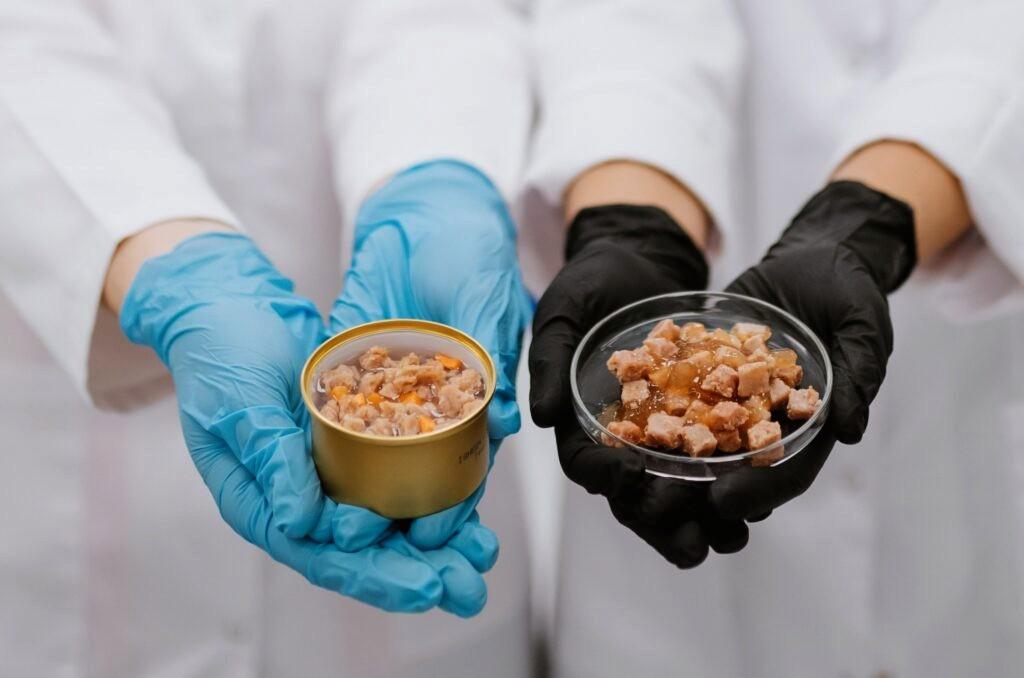 Formulation
Formulation
8+ MIN
11/12/2023
Czech company earns EU registration for cultivated pet food
Prague-based Bene Meat has become the EU's first cultivated meat company to be cleared for sale in pet food after receiving approval from the European Feed Materials Register. The milestone is the latest development in the burgeoning cultured pet food sector, which has witnessed new tech, new brands, as well as rebrands. Bene Meat announced in a press release that it had been 'certified by the European Feed Materials Register to produce and sell cultured meat for pet food'. Originally Reuters and others (including this publication) reported this statement as an official EU regulatory approval. However, Dr Hannah Lester, CEO and Principal Consultant at Atova Regulatory Consulting, told industry publication CellAgri that while 'Bene Meat has listed their cultivated cells of mammalian origin in the EU feed materials register…so it is true that cultivated meat could be classified as a feed material,' it was important to clarify that this is 'not the same as an EU regulatory approval or certification' as reported by Reuters in an article about the news. According to Dr Lester, 'any feed business operator (FBO) can list a new feed material on the Feed Material Register if it is not already listed in the EU Catalogue of Feed Materials. The Feed Material Register does not grant approvals or certification.' She added that 'Feed materials that are safe and compliant with Regulation (EC) 767/2009 can be used in pet food. There is no separate approval process for pet foods, but there are different labeling requirements.' Robert E. Jones, President of Cellular Agriculture Europe, said in a statement: 'While it is exciting to see the potential of cultivated meat explored for multiple purposes in the food system, it is critical that accurate information is communicated about how new products are regulated. This was not an EU approval. The company in question has self-listed its cultivated cells in the EU feed materials register, which is managed by the industry-led EU Feed Chain Task Force, and they do not grant approvals or certificates. It is important to clarify that animal feed materials do not require pre-market approval and have nothing to do with the robust EU novel foods process our members will go through to bring delicious and sustainable cultivated meat and seafood to consumers.' A spokesperson from Bene gave us the following updated statement about the news: ' To confirm, Bene Meat is officially registered as an FBO producing cultured cells of mammalian origin in the Czech Republic and registered this new feed ingredient in the European Feed Materials Register. Bene Meat has also extensively discussed the subject with the European Commission and Czech Authorities, and verified the application of classification 12 for cultured cells of mammalian origins and provided them with necessary documentation, description of the material and cultivation process. In this regard, Bene Meat has satisfied all legal requirements to bring the feed material based on cultured cells of mammalian origin to the market and is legally allowed to do so.' Editor's Note: we have updated our reporting to reflect this clarification with statements from Dr Hannah Lester, Robert E. Jones and a spokesperson from Bene Meat. Bene Meat first to list its cultivated pet feed on official EU register The Czech startup was founded in 2020 to make cultivated meat for human consumption but has pivoted to pet food for now, providing cultured meat as a raw material to global pet food manufacturers. It has been developing its own FBS-free growth factors since 2021, and now plans to boost production to produce several tonnes of cell-cultured meat daily by mid-2024. 'Thanks to the obtained certification, nothing prevents us from taking further steps,' said Tomáš Kubeš, Bene Meat's head of strategic projects. 'We're negotiating with feed manufacturers to get this wonderful product into production.' Its tech can be adapted according to manufacturers' requirements, offering an ingredient that can be fully used in the making of any pet food product. 'We look forward to working with manufacturers, as we're doing it for them and their customers,' added managing director Roman Kříž. 'Manufacturers have a unique chance to gain an unprecedented competitive advantage in the market, thanks to the existence of our product.' Kříž told Reuters that the startup is able to scale up its manufacturing at prices that make its meat commercially viable on par with premium and super-premium pet food products. Bene Meat is emerging in a market with strong acceptance of cell-cultured pet food. A Czech survey by NMS Market Research found that 48% of citizens prefer cultivated meat in pet food for health and safety reasons, while 27% cited ethical and ecological factors as purchasing drivers for cultured meat for their furry friends. The startup now plans to test how the meat tastes to pets, and will scale up production in its Prague lab as well as a new facility it's on the lookout for. Bene Meat expects to introduce the first cultured meat for pet food in the EU in early 2024. Meatly takes on the UK Another company planning to launch cultivated pet food in Europe – starting with its home market in the UK – is Meatly. If you've never heard of it, it's because this is the new name of the startup formerly known as Good Dog Food. The company, which raised £3.5M in seed funding earlier this year, has just rebranded as it prepares to launch in the UK. Its chairman Jim Melon, executive director of Agronomics has previously said that it would be easier to earn regulatory approval for cultured meat for the pet industry, rather than for human consumption. Meatly was only launched last year, and makes cultivated chicken by 'taking a sample of cells from a chicken egg just once'. It has already secured 'key partnerships with manufacturers' – including with petcare retailer Pets at Home – to get its pet food on shelves soon. 'Our pets love meat, but old-fashioned meat – produced through factory farming – requires a huge amount of land, water, and antibiotics and is a key cause of environmental degradation,' said Meatly CEO Owen Ensor. 'We need cultivated meat now more than ever. Pet food is the natural starting point, given consumers' excitement. We're thrilled to be at the heart of the future of meat production in the UK.' A kinder seafood brand for pets More recent developments include the formation of Marina Cat, a cultivated pet food brand born out of a collaboration between Canada's Cult Food Science and Singapore-based cultured seafood producer Umami Bioworks. Marina Cat will combine Umami's cultivated red ocean snapper and Cult's patented nutritional yeast ingredient, Bmmune, to make a 'high-protein, low-calorie' feline treat that 'provides benefits to a cat's cognitive function, based on its high levels of omega 3, 6 and 9 fatty acid chains'. The startup aims to begin production this year, and expects its product to have widespread availability in 2024. 'My vision for the future is that we no longer have to slaughter other animals to feed our cats,' said Joshua Errett, Cult's VP of product. 'This brand brings me one very great step closer to making that a reality.' The AI opportunity More recently, Vienna-based BioCraft Pet Nutrition (formerly Because Animals) unveiled its proprietary AI and machine learning tool to accelerate R&D for optimal cell proliferation and nutrient production. The tool processes publicly available data and synthesises it into 'a picture of the biochemical machinery inside a cell'. It then analyses the data to identify nutritional inputs that can enhance cell growth, nutrient biosynthesis, or other biological processes key to cultivated meat production. 'The main costs and time sinks on the way to commercialization are R&D-related, and our AI has substantially streamlined this process, accelerated our progress, and reduced costs,' said BioCraft founder and CEO Shannon Falconer. 'In this application, AI can surpass the human brain for speed and efficiency, and helps us derive more complex conclusions by making more connections between more facts.' This came a few months after BioCraft had developed a chicken cell line for both cat and dog food, with the cultured chicken ingredient containing all essential nutrients found in conventional pet food, including high protein content, key vitamins, fats and amino acids like taurine. With the help of AI, BioCraft – which has previously unveiled cell-based mice meat – is engaging in fewer, more targeted experiments, to fine-tune its cell proliferation process and improve the health credentials of its meat. Additionally, it can identify less expensive inputs and ingredients, including those less likely to raise regulatory concerns. (So far, no company has received approval from the US Centre for Veterinary Medicine.) Why alternative pet food is crucial Pet food is a $144B market and one that's set to grow annually by 5.3% until 2028. But the industry carries a massive environmental burden. In the US alone, for example, manufacturing cat and dog kibble is equivalent to 25-30% of all animal-consumption-related emissions. And globally, dog and cat food emit around 64 million tons of carbon per year – that's the equivalent of over 13 million cars. In fact, according to one study, if cats and dogs were considered their own nation, they would rank as the world's fifth-largest meat-consuming entity. Moreover, health is an increasing priority for humans, and the continued humanisation of pets has led to a crossover of habits. This is where cultured pet food comes in. A 729-person study last year found that while 32.5% of Brits would be willing to eat cultivated meat themselves, they'd be more willing to feed it to their pets (47.3%). Of those who would try these proteins themselves, 81.4% would be happy to give them to their four-legged friends. A recent study exploring the environmental impact of vegan pets can provide an insight into the climate-friendly nature of cultured pet food too. The research suggested that if all dogs and cats went plant-based globally, it could help feed nearly 520 million people, save more greenhouse gas emissions equivalent to those produced by entire nations, and free up land the size of several countries. Further research found that vegan diets can be just as healthy for cats as meat-based ones, shedding the 'obligate carnivores' universally associated with felines. It followed another study published last year that found that vegan diets are the healthiest and least hazardous choice for dogs. In fact, vegan cat food is a $9.2B market that's expected to nearly double by 2030, while the vegan dog food market is currently valued at £11.5bn ($14.1B), and projected to reach £21bn ($25.8B) by 2033, according to the Guardian. All the signs are there for the continued growth of alternative pet food, a category that also includes brands like Wild Earth (cell-based dog food) and Bond Pet Foods (cultured chicken for dogs and cats). These latest developments – notably the approval in the EU – are major markers of what's to come for this sector. This article was updated on November 10th 2023 to better reflect Bene's regulatory announcement. As per CellAgri's reporting and additional statements from Cellular Agriculture Europe, we have clarified our reporting to better represent the company's news. On November 13th 2023, we updated this article with a statement from Bene Meat. by Anay Mridul - AGreen Queen's resident news reporter. Originally from India, he worked as a vegan food writer and editor in London, and is now travelling and reporting from across Asia.
 Market Information
Market Information
3+ MIN
07/12/2023
German pet market continues to grow
The pet supplies market in Germany continues to experience an upward trend with total sales of around 6 bn euros. This is according to figures from the Industrial Association of Pet Care Producers (Industrieverband Heimtierbedarf, IVH) and the Zentralverband Zoologischer Fachbetriebe (ZZF). Sales of pet convenience food in bricks-and-mortar stores surpassed those of the previous year by 6.5 per cent, totalling 3.685 bn euros. The segment covering pet requisites and accessories likewise experienced notable growth, with sales up by 4.6 per cent to 1.101 bn euros. German Pet Industry: Current Market Landscape Numbers of pet ownership in Germany rank in second place in overall ownership rates, making Germany one of the most promising markets for pet supply brands in Europe. However, inflation-induced prices are also affecting German pet owners, as prices for pet food and veterinary services have increased significantly over the last few months. Nevertheless, Mintel's German pet market analysis shows that the German pet industry overall remains resistant in spite of price rises. However, the premium pet food and non-essential pet products and services segments, e.g. toys are at risk of seeing a decline in German pet market growth as some pet owners are looking for cheaper pet food and are cutting back on discretionary spending. Pet Ownership in Germany: What Consumers Want and Why According to our experts' German pet market analysis the vast majority of pet owners consider being a pet parent an important part of their identity, and they value their pets as members of the family. Considering these sentiments, our report on pet ownership in Germany shows that many are willing to spend money on their pets despite the ongoing cost-of-living crisis, thus fueling German pet market growth during difficult economic times. In fact, almost half of German pet owners have not made and are not considering making changes with regards to their pet due to inflation. This indicates a good overall resistance of the German pet market and opens up opportunities for marketing to pet owners in Germany. Pet Ownership in Germany – Consumer Behaviour: The majority of Germans habour strong sentiments concerning their pets, in fact, 73% of pet owners strongly or somewhat agree that being a pet parent is an important part of their identity. German Pet Market Challenges: Pets represent a significant cost factor, and this might lead to decisions not to replace deceased animals. Beyond that, many pets are currently in danger of ending up in shelters due to the cost-of-living crisis and consumers no longer being able to stem the costs of taking care of a pet. Pet Marketing Opportunities: The COVID-19 pandemic has introduced more flexible working patterns and they are here to stay, providing more Germans with the opportunity for pet, and especially future dog ownership. For 22% of Germans, the pandemic provided an opportunity to acquire a pet, and data from 2019-21 shows a notable rise in cat ownership. German Pet Market Opportunities The fact that pet ownership in Germany sports such high numbers provides chances for brands across various sectors to cater to German pet owners, e.g. with pet-friendly travel options to target activity-focused pet owners. However, the ability to own a pet is heavily dependent on one's lifestyle. A number of Germans who report not owning a pet, said that this is due to them being away from home too much, while others say their residence is not fit for pets. This opens up opportunities in pet marketing for leisure brands to attract animal lovers who do not own a pet by providing them access to animals. Despite the high regard Germans have for their pets, squeezed household budgets may dampen German pet market growth. Pet supply brands need to provide good value for money to be able to continue to provide competitive marketing to pet owners in Germany, e.g. by claiming greater product durability, or with multifunctional pet food promoting pet health. To discover more about the German Pet Market, read our Germany Pet Food Market Report 2021 or take a look at our extensive Pet Market Research by Dr. Jennifer Hendricks - Research Analyst – Consumer Lifestyle, Germany
 Formulation
Formulation
3+ MIN
06/12/2023
Agroloop commissions Bühler to provide proven insect-rearing tech for animal feed
Swiss company Bühler will deliver its proven crate-based nursery and rearing technology, enabling a quick ramp-up of the plant for commercial production. By the end of 2024, Agroloop plans to launch its first products, contributing to a more sustainable animal feed value chain. Industrial-scale insect plant Following its foundation in 2017 and the operation of a pilot facility, Agroloop got the green light to implement an industrial insect plant in Hungary in 2022. Now, they have selected all execution partners and are working at full speed to construct the plant and get it operational. In the new plant, Agroloop will produce more than 25,000 metric tons of black soldier fly larvae that will be turned into sustainable feed ingredients for the pet food, aquaculture and livestock sectors. The plant is only the first step in Agroloop's strategy to make insect feed ingredients available for the Central and Eastern European (CEE) agribusiness. 'The abundance of food processing by-products presents a unique opportunity for Agroloop's multi-plant rollout strategy in the CEE region, ' says István Nagy, co-founder and CEO of Agroloop. 'We leverage our strategic partnership with the leading regional feed producer UBM Group to improve feed quality and sustainability by creating future-proof feed formulas. This enables Agroloop to focus on rapid expansion and solidifies our position as a key player in the region.' Tech for short ramp-up time Agroloop's insect growth technology has a big influence on plant yield, directly impacting the performance of business. Agroloop has chosen Bühler's nursery and rearing technology for their insect growth system, which has several years of track record in the insect industry. 'We've assembled a technology supplier portfolio to build our plant. Bühler is crucial in providing this design's framework and core components. By choosing Bühler's technology, Agroloop can enter the value chain with the highest standards,' says István Nagy. Sustainable protein in demand In pursuing sustainable and environmentally friendly practices, the CEE region increasingly turns to alternative sources for feed ingredients. By incorporating insects into the feed supply chain, the region can address environmental concerns, reduce dependence on imported protein sources, and contribute to a circular economy approach. In addition, innovative feed formulations containing insects can optimize animal health and growth, thus leading to more efficient livestock production systems. Insects can be reared on agricultural and food processing by-products, transforming these materials into high-quality protein. This approach reduces the environmental impact of this value chain and creates a closed-loop system where resources are reused and recycled. The EU has previously depended on imported protein sources for animal feed, contributing to deforestation and habitat destruction in other parts of the world. By embracing the commercialization of insect-based livestock feed, the region can increase feed efficiency, reduce reliance on external sources, and contribute to local and regional food security. Andreas Baumann, head of market segment insect technology at Bühler, adds: 'The incorporation of insect ingredients in animal feed presents a compelling solution to the challenges faced by the livestock industry.' 'Besides providing nutritious and sustainable protein sources, insects empower local economies to become self-sufficient. That is why insect protein is key to a more sustainable and resilient food system.' Yesterday, Food Ingredients First reported that the UK Edible Insect Association said that European Novel Food regulations impose an 'extremely high barrier to entry for edible insect companies and ignore the sector's potential to build a more sustainable food system.' In other insect-based developments, US-based scientists recently revealed they are targeting dairy waste reduction by mass-producing the black soldier fly that feeds on it and evaluating the insect's potential as a feed for livestock and domestic pets. ' by Bühler
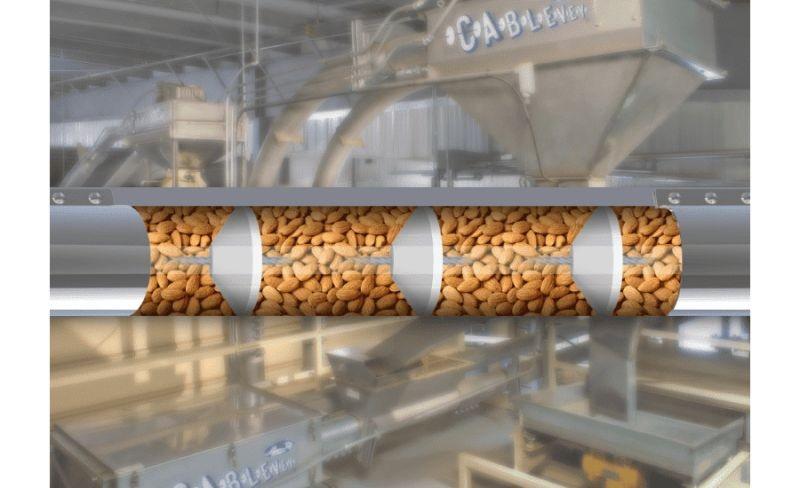 Conveying Systems
Conveying Systems
6+ MIN
04/12/2023
Countdown to Pet Food Conveyor Launch: Starting Up On Time and With Confidence
To move delicate pet food products or powders, most processors do extensive homework before purchasing a tubular drag cable conveyor to ensure that it meets their needs in terms of function and price. After the purchase, the conveyor must be expertly assembled and tested to ensure smooth production startup and continued performance. The challenge is that the typical third-party contractors installing various plant systems might need to become more familiar with specialized pet food conveyors and, thus, are more prone to make costly errors. A more prudent choice is using the OEM's team of experienced technicians. The OEM's experts have the advantage of designing the specialized conveyor and understanding its installation, operational requirements, and potential problem areas. 'If a tubular drag cable conveyor is installed incorrectly by a third party, it often needs to be completely pulled apart and rebuilt, which is costly and time-consuming. If the conveyor is run incorrectly, damage will occur, and components must be replaced. All this only delays startup,' says Terry Derby, Director of Parts and Field Service for Automated Handling Solutions (AHS). AHS is the service-focused subsidiary of Cablevey Conveyors, an Oskaloosa, Iowa-based conveyor manufacturer that has been designing, engineering, and servicing enclosed cable and disc tube conveyors for 50 years and is in more than 65 countries. As a solution, pet food processors seeking superior conveyor performance from the start rely on expert-supervised installation and commissioning to ensure they will be ready to run products on time, at the necessary volumes. Today, a tubular drag cable conveyor requires considerable expertise to install. These systems gently move material through a sealed tube using a coated, flexible, stainless-steel drag cable pulled through on a loop. Solid circular discs (flights) attach to the cable, pushing the product through the tube without air. 'This type of conveyor is uniquely engineered to transport delicate materials gently. The tubes form a continuous loop that must be carefully assembled for a tight fit to ensure no misalignment or gaps between sections. While the modular components lend great flexibility to system design, each component must act in concert with the rest for proper conveyor functionality,' explains Derby. After selecting and purchasing a conveyor, the pet food processor's next step is installing it, which often requires professional assistance. Reliability Starts with Supervised Installation Whether relying on internal staff members for installation or contracting the job to an outside team of millwrights or skilled pipefitters, supervised conveyor installation can ensure proper system installation. Getting expert assistance is still essential during installation, even with the manual that has detailed instructions and QR-code links to videos for each conveyor component. 'Supervised installation is important to ensure that your system is installed properly so you don't run into maintenance problems due to an improper install,' says Derby. Derby insists that 'supervised installs are probably the most important support service we offer.' This step is often neglected when a less experienced third party performs the installation, which can escalate costs. At this point, AHS is frequently asked to complete final preparations and correct any problems before production startup, a process known as commissioning. 'When a processor brings us to their facility after declining a supervised installation, we often have to work backward for a day or two to correct issues. Having us there for supervised installation eliminates the need for correction and any idle contractors waiting on us for the repair, so it pays for itself,' says Derby. In the case of AHS, the company's technicians have logged hundreds, if not thousands, of hours on-site in various manufacturing facilities worldwide. This singular focus gives them the knowledge and expertise to streamline the installation process and prevent issues that can lead to system inefficiencies, product loss, or complete system failure. As part of the supervised installation, skilled technicians ensure the correct positioning of the conveyor's hangers and the proper torque for couplings. The system is properly cleaned to remove any metal fragments or foreign contaminants introduced during installation. In addition, the technician confirms that all conveyor inlets are in place and that all discharges are functioning. Even seemingly minor gaps or misaligned areas in the conveyor tubing can become a severe issue. 'If gaps are in the conveyor's tubes, the discs will 'catch' when crossing the joint, causing excessive wear on the cable and motor. If not corrected, this could lead to premature failure, production downtime, and added repair and replacement costs,' says Derby. According to Derby, another common wear item in tubular drag cable conveyors is sweeps, areas where the tube changes direction. He explains that sweeps are where the cable is under the most significant tension and where the discs rub inside the tube. Since sweeps show the first signs of wear, proper installation can reduce the wear and significantly prolong tube and cable life, simplifying maintenance. 'With a supervised install, processors can ensure that their conveyor is assembled correctly to enable seamless startup, reliable production, optimal output, and greater longevity for the system and its parts. Our reputation is on the line to get it right from the start,' says Derby. In addition, a supervised installation includes a full report outlining actions to correct any issues found. Due to the attention to detail, a supervised installation also preserves the standard warranty for the system's components. Of course, operators also play a critical role in conveyor performance. For this reason, having experts onsite can be one of the best ways to train the operators and maintenance crew on properly running, cleaning, and maintaining the system. Reliable Production Requires Expert Commissioning When the installation is complete, the next step is to schedule commissioning. The average commissioning visit for a single-system installation usually lasts an entire day. The onsite commissioning process readies the conveyor for total production and identifies any immediately correctable issues to keep the startup on schedule. At this point, the system must be installed entirely, including all mechanical and electrical components. The conveyor material must also be ready for introduction to the system. This is where a botched installation by a third party can come to light without supervised installation by the OEM. 'We are often asked to 'fix' poor installations by third-party contractors. We have had to tear whole systems apart. This frequently requires a complete rebuild and replacement of damaged parts, which adds cost, creates downtime, and delays startup,' says Derby. In the case of AHS's commissioning service, the technician conducts an inspection using a camera that runs through the entire system layout to ensure that everything is correctly assembled and ready for testing. The technician then performs a test run of the product, from the inlet feed through the sweeps to the discharge outlet, and verifies that it flows at the desired speed. 'Tailoring the conveyor to the material conveyed can require adjustments to fine-tune the process. With the commissioning, the goal is to increase efficiency, production volume, and reliability,' says Derby. He adds that 'checking the system's health' also uncovers any issues that might arise, which technicians can address to prevent production downtime. He points out that commissioning also extends Cablevey's standard warranty. As a final step in the commissioning process, the technician issues a report for the processor that documents all findings from the full-system inspection. Completing conveyor installation, commissioning, and start-up is only the start of the OEM's and processor's relationship since the system's lifespan can be decades. In addition to traveling on-site for emergency service calls, the company offers an annual service visit to conduct a detailed system inspection and address any issues, identify worn parts, ensure predictive maintenance is being conducted, and provide any additional training needed. This complete system audit aims to extend the conveyor's lifespan and prevent unexpected downtime. 'Our mission is to provide conveying equipment and ensure it performs as required, with minimal downtime and maintenance. Once a pet food processor buys a system, they become part of our family. We will continue to support them every way we can, even as their needs evolve,' concludes Derby. By Del Williams is a technical writer based in Torrance, California. Source All Pet Food
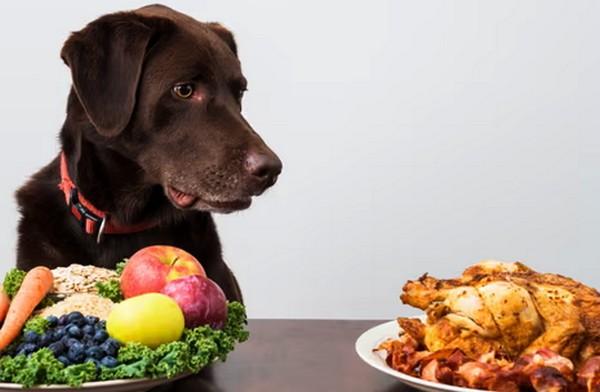 Vegetable Origin
Vegetable Origin
3+ MIN
01/12/2023
Australian firm introduces flexitarian diets for dogs
Many pet parents are adopting one of pet food's hottest trends: raw, fresh and high meat diets. However, high meat diets typically have a high environmental impact. While many pet parents are resistant to turning their dogs vegan - although research shows they could - Planet A Pet Food helps people move to a flexitarian diet for their dogs.
Planet A launches Australia's freshest, entovegan dog food, combining upcycled veg and insect protein, with a food-grade plant-based meat analog, that's being used in restaurants and food service around the country.
"People have the idea that their dogs should eat meat, and a lot of it," says Planet A founder Amanda Falconer. "And they often say they're uncomfortable forcing their 'environmental' choices onto their dogs. When we created Planet A, we wanted to meet people where they were in their dog nutrition beliefs but also give them options to mix it up…just as they do for themselves. And that's because, even though I'm vegan myself, I know the majority of people are going to be meat reducers, not vegans."
Even though dogs don't have a requirement for the ingredient - meat - but the nutrients it provides, giving dogs the pleasure of the taste and texture of meat was also important. Working with small animal nutritionist Dr Anna Sutton, Planet A Pet Food created nutritionally complete meat-free food that dogs love, featuring human food-grade plant protein, that looks and tastes like meat, but isn't.
The Planet A No-Meat Dinners also combine insect protein, food by-product ingredients together with sustainably harvested algae. Consumers just add water to rehydrate the food, so that it's fresh, when they need it.
Food by-product ingredients include:
Black solider fly larvae protein, produced using traceable pre-consumer food by-products, like bread from Bakers Delight, excess stock from Simplot and unconsumed food from McDonalds. The production of 1 tonne of insect protein powder creates 2.5 tonnes of insect fertiliser and utilises 14 tonnes of food by-products, preventing an estimated 28 tonnes of greenhouse emissions, resulting in a net offset of over 25 tonnes of carbon emissions per tonne of protein powder.
Vegetable powders from Australia's largest tomato processor, Kagome. They've developed LycoFibre®, an antioxidant-rich ingredient produced from tomato skins, and NinjinFibre® carrot fibre. About 25% of carrots used for juice is waste, and so Kagome's drying process converts 7000 tonnes of carrot pulp per year into 700 tonnes of value-added powder.
Vegetable powders lightly dried from out of spec (size-wise) veg and the leaves of cabbages, broccoli and cauliflower. These are also used in human food snacks.
Up to a third of greenhouse gas emissions globally come from the food system and pet food accounts for about 25% of that and growing. About a quarter of all food grown never leaves the farm and Australia discards about 7 million tonnes of food every year. 42% of Australians have either reduced meat consumption or stopped eating it altogether. They have about 2.7million dogs between them.
By Planet A
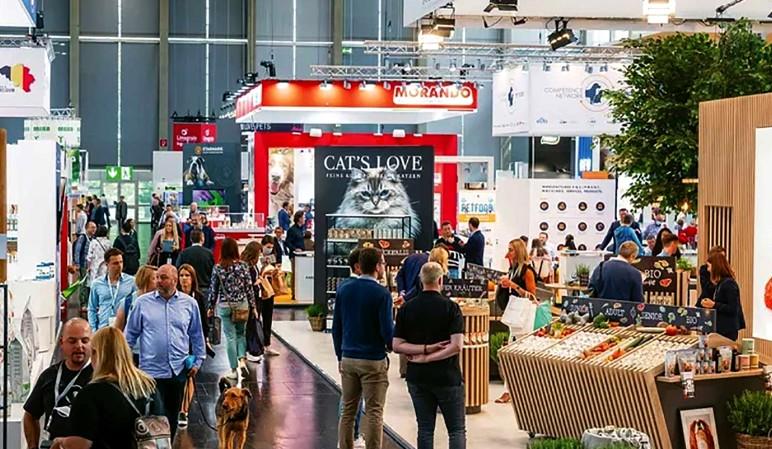 Market Information
Market Information
4+ MIN
30/11/2023
Impressive registration figures for Interzoo 2024: World's leading pet trade fair continues to grow
Wiesbaden – Six months before Interzoo 2024, it is already clear that the world's leading trade fair for the pet supplies industry will be bigger than ever before in 2024. The stand registrations have surpassed the exhibition space of Interzoo 2018, the largest to date, therewith setting a new Interzoo-record for exhibition space. Exhibitors from 63 countries are registered for the pet industry's most international trade fair and at least 13 international pavilions will enrich the trade fair, including new country pavilions from thriving pet industry such as India, as well as a large number of European pavilions such as the pavilion from the UK, which first appeared at Interzoo in 1964. The most comprehensive product range in the pet sector Compared to Interzoo 2022, the 38th edition of the trade show (7-10 May 2024) will make use of two additional exhibition halls, then covering 14 halls in total. Despite the increased number of halls, there is already a shortage of free stand space: Only about five per cent of the exhibition space is still available "The continuing strong demand from exhibitors shows the importance of the event and confirms we're on the path to a great Interzoo 2024," says Dr Rowena Arzt, Head of Exhibitions at Interzoo organizer WZF – Pet Industry Services. 'Interzoo has become the world's leading trade fair for the pet industry due to a supporting programme that is at the pulse of the industry, numerous networking events with industry innovators and decision-makers, the world's most comprehensive range of products and services for pets and Nuremberg as an attractive location and exhibition venue in the heart of Europe.' Interzoo welcomes the pet world to Nuremberg A closer look at the excellent registration numbers further underlines the importance and internationality of Interzoo; features that have long made the trade fair a highlight in the marketing plans of big players. "We are delighted to welcome market leaders from all important segments of the pet industry to Nuremberg and are looking forward to celebrate the biggest Interzoo of all time," says Alexander Mattausch, Executive Director Exhibitions at NürnbergMesse. The Interzoo website already lists all registered exhibitors. Using the filter option exhibitors can be searched by animal segment and within the segments by product category. The pet food product segment is traditionally strongly represented in all animal segments, as are international market leaders from the accessories segment. A large number of international industry players from the aquarium and terrarium segments will be presenting their latest products in the categories of aquariums, terrariums, furniture, technology, lighting, accessories and furnishings. With regard to small mammals and birds especially pet food, litter and care products are expected to be well represented. In the garden animals segment, manufacturers will be presenting their latest innovations in the areas of garden ponds, winter feeding and hobby farming. Other product segments include equestrian sports and shop fittings. In addition, the thriving Petfood Technology product segment will be complemented both at Interzoo and on the day before, 6 May 2024, by the Petfood Forum Europe, organized in cooperation with WATT Global Media. The conference will bring experts in pet food, processing and packaging together. Supporting programme at the pulse of the industry The Interzoo supporting programme with sessions on countries and regions offers exciting insights into markets from all over the world and provides a stage for important trends in the global pet supplies industry, particularly with the Fresh Ideas Stage for start-ups and innovative products in Hall 3 and the Product Showcase in the entrance area of the trade fair. Exhibitor parties (Wednesday, 8 May 2024) and the Interzoo Party as a networking event for the international pet industry (9 May 2024) complete a supporting programme that is right at the pulse of the pet industry. Information about the organizer WZF GmbH – Pet Industry Services organizes Interzoo in Nuremberg in partnership with the German Pet Trade & Industry Association ZZF as the founder and honorary sponsor. WZF is the owner and organizer of the world's largest international trade fair for the pet industry. With more than 1,300 exhibitors and about 28,000 trade visitors from 129 countries at the last event, Interzoo is the undisputed world's leading international fair for pet supplies. Since 1988, WZF has engaged NürnbergMesse GmbH to operate the trade fair. Since the summer of 2020, Interzoo Academy has been offering specialist presentations on topics of interest to the pet supplies sector. WZF is a hundred percent subsidiary of ZZF. With its business fields trade fairs and events, media work and public relations, education and the issuing agency for identification markings for protected species WZF makes an important contribution to the economic and communicative development of the pet industry. by Interzoo Source: All Pet Food
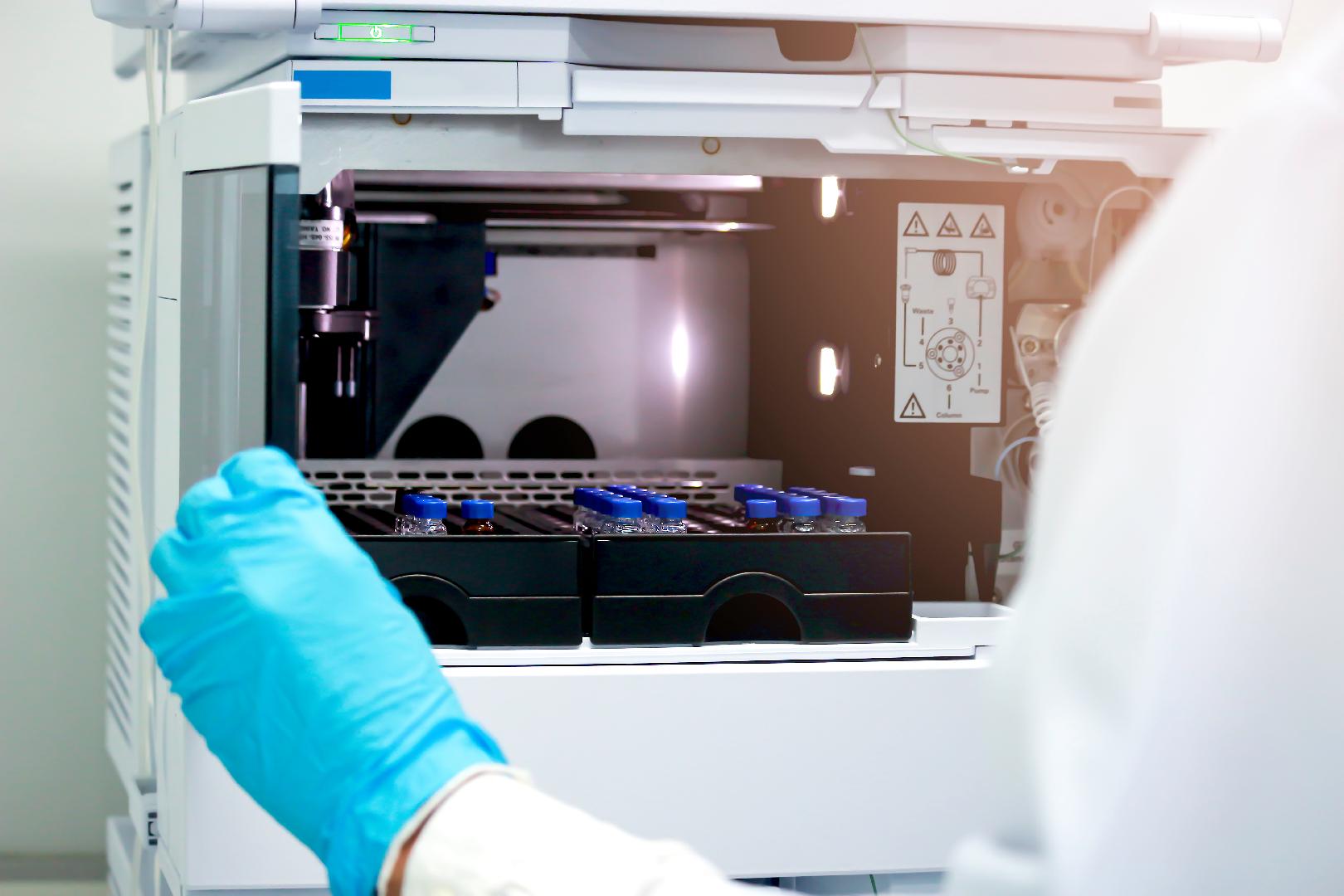 Formulation
Formulation
5+ MIN
29/11/2023
Por Ludmila Barbi T. Bomcompagni
Mycotoxins in dog and cat food: how to deal with them?
Mycotoxins are toxic substances resulting from the metabolism of some fungi and molds. For the development of microorganisms that produce these toxins, several factors are necessary, such as physical-chemical factors, type of substrate, temperature, and humidity of the storage place, in addition to the amount of water present in the grains and their pH (MAZIERO and BERSOT, 2010). Mycotoxins do not induce protective immunity since they are not antigenic, and therefore, their effects vary with the type, dose, and even the age, sex, and health of the animal. The main clinical signs reported in dogs and cats poisoned by mycotoxins present in their food are vomiting, diarrhea, convulsions, abdominal pain, polydipsia, polyuria, ascites, anorexia, and development of chronic liver damage. In canine medicine, it is common to record mycotoxicoses that occur silently, which makes differential diagnosis difficult (SILVA, 2019; WITASZAK et al., 2019). The main mycotoxins and their respective target organs, identified in the canine species, are aflatoxins (AFLA) and fumonisins (FUMO) in the liver, deoxynivalenol (DON) in the digestive system, ochratoxin A (OA) in the kidneys, zearalenone (ZEA) in the reproductive system, patulin (PTA) in the liver and kidneys, and citrinin (CIT) in the kidneys and digestive system (SOUZA and SCUSSEL, 2012). Contamination of dog and cat foods with mycotoxins can occur directly or indirectly. The first occurs when some of the ingredients are previously contaminated, and even with the elimination of the fungus during the extrusion process, the mycotoxins remain in the food, since they are resistant to high temperatures. The direct form is related to food contamination by toxigenic fungi and the subsequent appearance of mycotoxin production (FERREIRA et al., 2007). The mycotoxicosis scenario in pet food factories is quite challenging Given this, we need strategies that guarantee the high quality of the ingredients used in the manufacture of food for dogs and cats or find solutions that prevent mycotoxins from being absorbed by the animals' bodies. Implementing a comprehensive mycotoxin monitoring program in the pet food plant is essential. This program should include several steps, from careful selection of ingredient suppliers to accurate and reliable laboratory testing. To address the problem of mycotoxicoses it is essential to adopt an approach that includes the identification, quantification, and understanding of the mycotoxins present in the ingredients which will be used to manufacture dog and cat foods. This involves the use of precise methodologies that allow us to determine which mycotoxins are present, as well as their concentrations, helping to evaluate ingredient suppliers and the possible harm that may be caused to animals. Currently, the most well-known methodologies available for the quantitative analysis of mycotoxins in ingredients are high-performance liquid chromatography (HPLC), enzyme-linked immunosorbent assay (Elisa), lateral flow strips (LFD) and near-infrared spectroscopy technology (NIR). These methods allow detection at extremely low levels, ensuring compliance with food safety regulations. It is important to highlight that the choice of a methodology is crucial to have a reliable analysis. However, the real value of managing mycotoxins found in ingredients used in the manufacture of dog and cat foods lies in the ability to interpret the results, evaluate their criticality, and implement corrective plans. Technology is playing an increasingly important role in improving mycotoxin monitoring. Real-time detection systems and predictive analytics based on artificial intelligence are being explored to identify potential risk points in production and enable proactive response. Mycotoxin adsorbent additive's introduction in pet foods has proven to be an effective solution to mitigate the risks of mycotoxins, mainly in factories that do not have control analysis at reception and in monitoring, the silos where these ingredients are stored. For an adsorbent to be considered efficient, it must present some characteristics: it must destroy, inactivate, or eliminate the toxin; not produce toxic or carcinogenic residues in final products or in foods obtained from animals that consumed a detoxified diet; and maintain the nutritional value and acceptability of the product (FREITAS et al., 2012). The adsorbent or chelating agent is an inert material without any nutritional principle, which could adhere to the surface of the mycotoxins present, causing their elimination through the feces of dogs and cats, preventing the toxins from being absorbed by the body. (MOREIRA et al., 2018). Aluminosilicates (clays) are the basis for the development of adsorbent additives. In the 1980s, the ability of certain clays (bentonites, zeolites, and others) to bind to food mycotoxins in the digestive tract of animals, preventing their absorption, was discovered. Currently, we have the most varied types of adsorbents available on the market, products based on volcanic rocks associated with other more technological and broad-spectrum compounds that combine the use of inorganic, organic, and yeast adsorbents. In addition to additives that support the immune system, they restore liver functions and help maintain intestinal integrity. When choosing a mycotoxin adsorbent, it is important to check the mycotoxin adsorption efficiency, which considers the percentage of adsorption and desorption in the intestine. This evaluation includes the stability of the adsorbent-mycotoxin bond and its effectiveness in different pH ranges since the product is expected to act throughout the gastrointestinal tract (Binder, 2007). pH values vary throughout the digestive tract, from acidic conditions to basic conditions. Therefore, the binding capacity of products can be influenced by changes in pH, creating the risk that mycotoxins are adsorbed in one part and released (desorbed) in another part of the digestive tract (Zavarize, 2021). Furthermore, it is necessary to evaluate whether the adsorbent has a broad spectrum, that is, if it is effective for as many mycotoxins as possible. Another extremely important point to consider is the need for the adsorbents to have low inclusion so that they take up minimal space in the food formula and contribute an insignificant amount of mineral matter to the final product. This is especially crucial in premium, super-premium, and especially cat foods, where the amount of mineral matter tends to be lower, compared to dog foods, due to the adjustments necessary to avoid the formation of uroliths. Furthermore, it is essential that the adsorbents do not affect the palatability of the product. Source: All Pet Food Magazine
 Dogs
Dogs
3+ MIN
28/11/2023
What to Know About the Mysterious Respiratory Illness Affecting Dogs
A mysterious respiratory illness that has been sickening dogs continues to spread across the United States while veterinarians try to determine its causes and the best methods for treating it. The symptoms are similar to kennel cough, an upper respiratory infection, but can last much longer and, in some cases, prove fatal, according to veterinarians. Here is what we know: What are the symptoms? The infected dogs develop a cough, fever, lethargy and intermittent loss of appetite. While infected, some dogs will develop pneumonia. Veterinarians have reported seeing blue and purple gums in those cases. Dogs with kennel cough may show some of these symptoms, such as coughing, lack of appetite, fever and lethargy. If it's kennel cough, the symptoms usually clear up in one to three weeks. With the latest respiratory illness, however, veterinarians are reporting that dogs can have symptoms for six weeks or more. Where has this been reported? The illness has been found in at least seven states: Colorado, Massachusetts, Oregon, Rhode Island, Illinois, Maryland and Wyoming. It's unclear how many dogs in total have been infected, because there is no official count of the cases. The cause is not clear It's unclear what causes the illness. Researchers are still running tests to learn more about the illness. There is some disagreement on whether the illness is caused by a virus or by bacteria. Dr. David Needle, senior veterinary pathologist at the New Hampshire Veterinary Diagnostic Laboratory of the University of New Hampshire, said that he believed the illness was being caused by a bacteria, based on what he had seen in his area. Some veterinarians in Oregon hypothesize that it could be viral, because the dogs they have treated have not responded to antibiotics. 'I'm open to it being either, and I'm open to it being something we're not even thinking about,' said Dr. Kurt Williams, director of the Oregon Veterinary Diagnostic Laboratory at Oregon State University's Carlson College of Veterinary Medicine. Researchers strongly agree that dogs are most likely to develop the illness when they have been around other dogs. Dr. Lindsey Ganzer, a veterinarian and the chief executive at North Springs Veterinary Referral Center in Colorado Springs, Colo., said that all of the dogs she had treated for the illness had spent time in places with high concentrations of dogs, such as boarding facilities, doggy day care centers or dog parks. Dr. Ganzer said she feared that veterinarians might see an increase in cases as more owners board their dogs or send them to day care during the holidays. 'We're really hoping just with getting the word out there that people are less inclined to do that,' she said. 'The veterinary community as a whole is kind of scared.' What should owners do? Don't panic, and isolate your dog if it is showing symptoms. Dr. Stephen Kochis, the chief medical officer for the Oregon Humane Society, said he did not want people to be alarmed by the new illness, because the overall number of dogs with respiratory illnesses had not increased. If dogs are showing symptoms, there are steps owners can take to be proactive, he said. 'All of us have gone through Covid,' he said. 'I would say if your dog is showing signs of respiratory disease, isolate them in the home, call your vet, get them seen.' Source: The New York Times
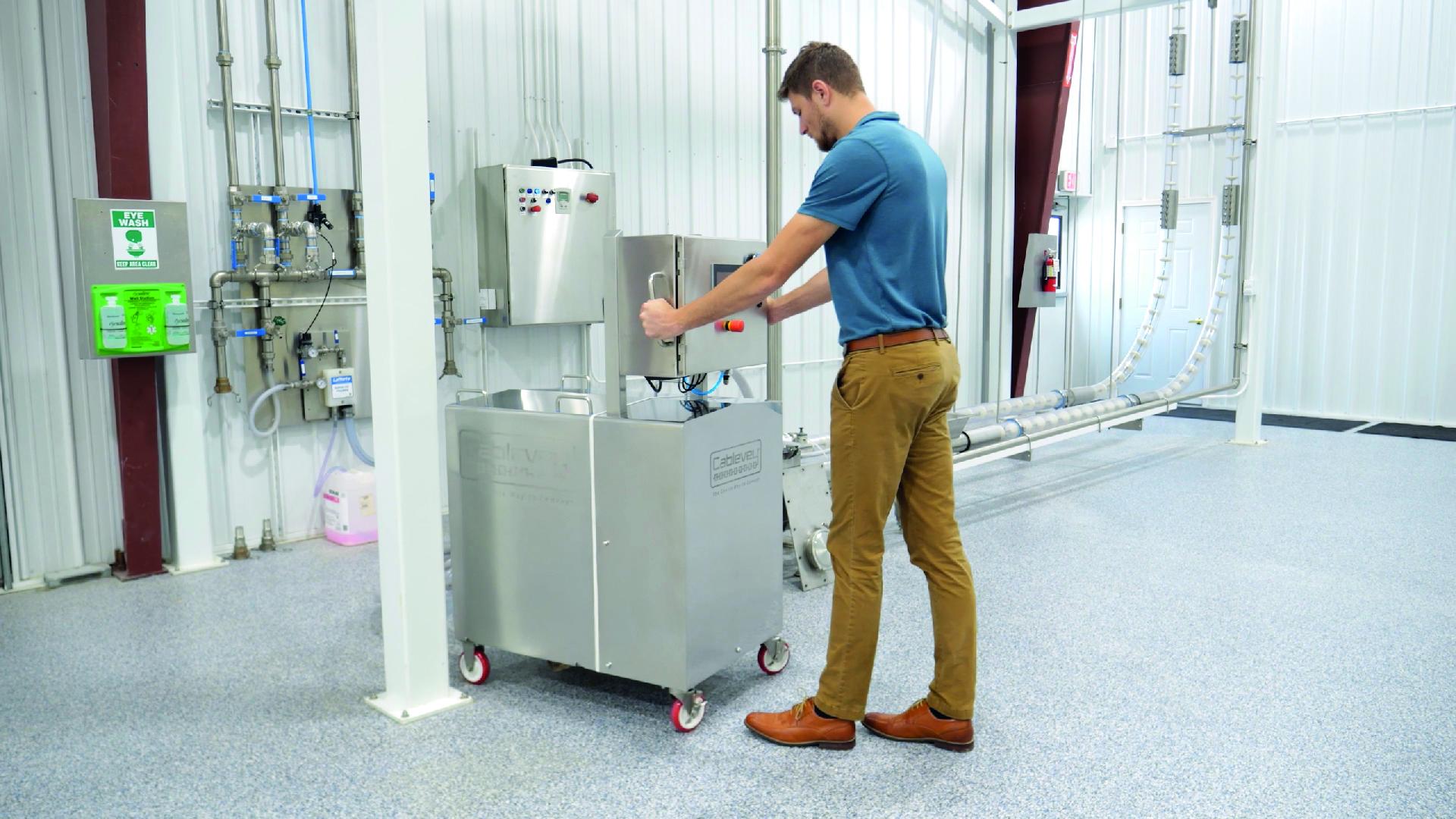 Conveying Systems
Conveying Systems
4+ MIN
27/11/2023
Mobile 'Smart Cart' Automates Food Conveyor CIP for Pet Food Manufacturers
To promote food safety and sanitary compliance, pet food manufacturers are increasingly seeking the ability to clean-in-place (CIP), an automated method of cleaning the interior surfaces of tubular drag conveyors without disassembly. Now, with the advent of mobile tools like an innovative 'smart cart' that quick-connects to any tubular conveyor and enables simple, customizable 'single button cleaning recipes,' CIP is becoming easier, faster, less labor-intensive, more repeatable, and almost fully automated. Tubular drag conveyor systems gently move product through a sealed, enclosed tube using a drag cable and circular discs pulled through on a loop, so they are ideal for delicate items. Designed to handle a variety of different forms and sizes, from kibble to seeds or pellets and nutrients, tubular conveyors maintain both quality and proper proportions. In a wet CIP process, the system is flooded with water, flushed, rinsed, cleansed, and thoroughly sanitized. Although the process is very effective, streamlining its automation and simplifying the process for all a facility's tubular drag conveyors has been a priority for leading innovators in the industry. 'The standard system required port hookups to water lines and installing piping. The processor also had to make decisions, such as which water temperatures to utilize, or whether to use a cleaning solvent - and the correct amount to add manually,' says John Adair, Engineering and Quality Director for Cablevey Conveyors, an Oskaloosa, Iowa-based conveyor manufacturer that has designed, engineered, and serviced enclosed cable and disc tube conveyors for 50 years, and is in more than 65 countries. To simplify the wet cleaning process, Adair and his engineering team at Cablevey have developed a small, mobile 'smart cart' with integrated water line hookups that a single technician can easily take to any tubular drag conveyor in a facility. The cart is specifically designed to be a fraction of the size of similar carts on the market to facilitate mobility. When the cart is in position and connected to water lines, the CIP process is automated and controlled by a programmable logic controller (PLC) that reduces the need for manual labor and virtually eliminates the risk of improper cleaning. 'Once it is set up, all you do is press a button, and it will bring in the required amount of water at the correct temperature with the necessary amount of solvent for cleaning,' says Adair. The smart cart is designed to store and utilize pre-programmed CIP recipes to flush various residual materials from the tubular drag cable conveyors in a facility before new production runs. The cleaning recipes enable even those with very little training to use the cart, which is helpful in today's tight labor market and allows the technician to move on to other tasks once the cleaning process begins. The use of easily executable recipes ensures a superior, repeatable clean that essentially 'error-proofs' the process. This is particularly important when the technician may be new or less familiar with the production equipment. 'Depending on the product conveyed, sometimes all you need is a wet rinse or a specific cleaning solvent. All that information is saved, so after the first cleaning, it can be automatically repeated. Just push a button to start the appropriate recipe, whether you have one conveyor running multiple products or dozens of conveyors running various products,' says Adair. To meet strict compliance standards, the smart cart also documents all critical CIP information, such as water volume and temperature, chemicals used, and cleaning time by date, in an easily retrievable data log. Since decreasing production downtime between conveyor cleanings is a priority for pet food manufacturers, Cablevey provides new capabilities with the cart that expedites the CIP process. Currently, the CIP process floods the tubular conveyor system but is not designed to clean the discs specifically. 'Operators would manually clean each disc and advance the system disc by disc when the discs had to be cleaned of particularly viscous substances,' says Adair. Once it is set up, all you do is press a button and it will bring in the required amount of water at the correct temperature with the necessary amount of solvent for cleaning. Now, as an option on the cart, a disc washer can be integrated with the conveyor turnaround to spray a pressurized cleansing solution on the discs. This helps to remove stickier substances that could remain after routine CIP cleaning. 'The disc washer sprays high-pressure water directly on the discs, so it acts like an automatic car wash. At the push of a button, the discs and cable are run through, and spray cleaned, which reduces CIP time and eliminates the need to manually clean the discs,' says Adair. To further reduce downtime, Cablevey also offers a new sanitary blower option. 'After the wet CIP process, a sanitary blower attachment on the smart cart can dry the discs and other parts of the system 75% faster than typical air drying,' says Adair. He points out that the faster the conveyor is cleaned and dried after a product change, the sooner it can be put back into service, which improves profitability. According to Adair, Cablevey's Mobile Smart Cart was already available since it was officially unveiled at Pack Expo, a premier packaging and processing show held at the Las Vegas Convention Center in September. The event featured full-scale setups of machinery in action. The company also offered traveling demo smart cars to customers in September for free so clients could test drive the units. Pet food manufacturers can now purchase the demonstration unit used in their facilities, with hands-on training available immediately. While the pet food manufacturing industry is aware that automated CIP can improve conveyor system production uptime, barriers to implementation have slowed adoption. Utilizing a mobile smart cart with integrated water hookups will help manufacturers easily implement CIP in tubular drag conveyors throughout their facilities: expediting conveyor cleaning, production changeover, and sanitary compliance. By: Del Williams - Technical writer based in Torrance - California Source: All Pet Food Magazine
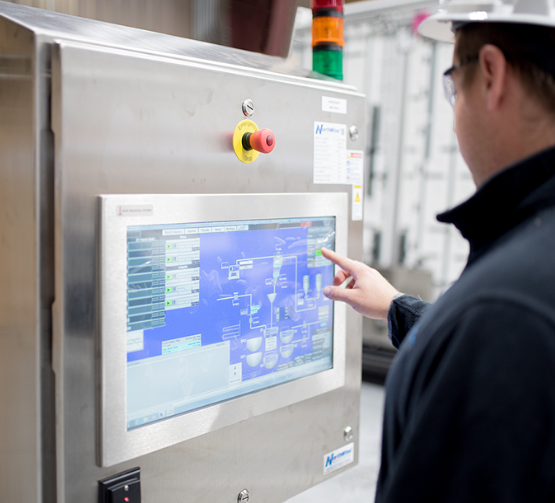 Manufacturing Process
Manufacturing Process
2+ MIN
24/11/2023
Northwind´s expertise in pet food automation
Producing high quality pet food is what your brand is known for. At NorthWind, they help you maintain that reputation through innovative and reliable automation solutions. Their goal with every project is to have your plant running as efficiently as possible. Plant Integration Your plant consists of many different pieces of equipment working together to produce quality pet food & treats. NorthWind specializes in tying all those pieces together to create one seamless control system.This full plant automation solution provides increased plant visibility and allows you to monitor your entire plant no matter where you are. They connect your plant floor to the rest of business by integrating to your ERP System. Formula Management NorthWind's Formula Management software has the flexibility you need with an easy to use interface. BatchLOGIX® formula management software was built to handle the dynamic processes that are common with extruded pet food and treat plants. Reach maximum product consistency with formulas that contain both process & ingredient set points and handles both batching & continuous processes. With BatchLOGIX, your recipes can be as flexible as you need them to be. Customizable set points for both ingredients and process equipment can be configured in the system. Historical data can be accessed through easily customized reports to target specific information using filters. Once created, reports can be exported to Excel, WORD, RTF, or PDF for sharing. Traceability Track ingredients from the time they enter the plant to the time they leave. Trace ingredients through your entire manufacturing process with lot tracking, storage, and reporting capabilities. Lot numbers for liquid and dry ingredients can be traced through multiple systems from source to finished product. Data Management NorthWind makes it easy to collect and use the data that is already available in your plant operation so you can make better, more informed decisions. They collect information about everything from critical control points and run parameters to ingredient usage and system alarms. With this information they provide KPI dashboards and setup equipment maintenance alerts. All information is stored and ready for analysis and comparison to real-time data. Their online web reporter tool makes this easy! About NorthWind NorthWind is an automation company in Kansas providing controls and automation solutions to manufacturing facilities around the world. Their skilled team of engineers, programmers, and technicians have extensive process experience in addition to programming and design expertise in a wide range of industries. You are invited to know more! By: All Pet Food
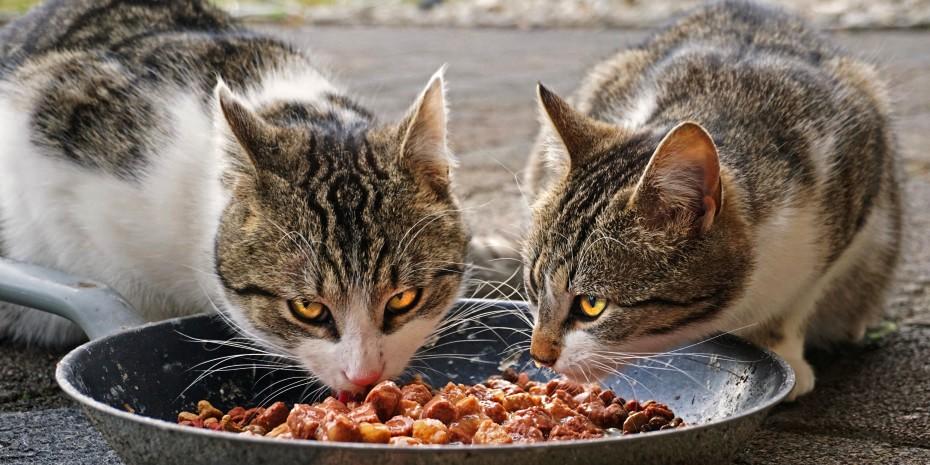 Labels
Labels
4+ MIN
23/11/2023
Private Labels take a bite out of Europe’s pet food market giving retailers 34% share of €10.8 billion market
In a recent press release, the PLMA International Council reported that general growth in the market share of store brands was to be observed in 17 European countries. This is revealed by updated data from Nielsen IQ, which was commissioned by the PLMA. According to this, the value share increased by comparison with the previous year across all product groups by 1.7 per cent to 38.1 per cent in total. In 16 out of 17 countries, there was a rise in retailer's brands, with a slight decline only being registered in Switzerland. Considered from a global perspective, European countries continue to be among the biggest markets for private labels.
New data from Circana, the leading advisor on consumer complexity and formerly IRI and The NPD Group, reveals that retailers have capitalised on the growing pet food category by launching more private label products. They increased their share of the €10.8 billion category by 18% (€3.6 billion) during 2022 across Europe's six largest markets (France, Italy, Germany, Spain, UK, and Netherlands). In the last quarter of 2022, this growth accelerated to 25% as pet owners continued to trade down from their favourite brands.
Private labels now have 34% value share of the pet food category across Europe. It is especially high in Germany and Spain, where a wider range is available in discounter channels. Across total FMCG, private labels now make up 38% of value sales in Europe (€229 billion).
Value sales of pet food have grown across Europe by 5.4% over the last four years to reach €10.8 billion in value sales. During 2022 that growth rate almost doubled to 12% (compared to 5.9% annual growth in 2021) driven by inflation and an explosion of pet ownership[1]. Innovation in pet food rose by a tail wagging 39% in 2022 compared to 2021 as more people took ownership of pets.
Ananda Roy, Global SVP, Strategic Growth Insights, Circana said, 'Led by manufacturers and retailers in the UK and Italy, there has been a lot of innovation around breed and age-based nutrition. This health and wellness focus taps into the boom in new pet ownership that started during the pandemic and allows manufacturers to follow the life of these pets as they grow. Other innovations include the use of human food ingredients such as vegetables and pulses as a source of high protein, low fat and balanced nutrients especially where traditional ingredients may cause allergies or sensitivities.
As a result of the innovation boost, new product launches in pet food accounted for 9% of total pet food sales (for private labels and national brands). New product launches contributed a substantially higher percentage of sales in Germany (28%) and the Netherlands (11%) than the other European countries.
Intense inflationary price increases (of around 12%) did not lead to the same declines in volume sales seen in across total FMCG (-1.1% for total FMCG in 2022) or other categories such as food, where consumers were forced to cut back on consumption as the cost of living crisis became embedded. Unit sales of frozen food for example declined by -4.1% and chilled -4.1%. Instead, pet food experienced a small uplift in unit sales of +0.4% (and 1.6 percentage points for private labels), suggesting that this category is resilient to inflationary turbulence.
Households continued to buy their favourite pet food brands at the beginning of the cost of living crisis, even while they were switching to private labels. Eventually the availability of as good quality private labels and intense cost pressures have seen a growing number of shoppers switching from their favourite national brands.
'Pet food has traditionally been dominated by trusted national brands, so the strides retailers have made developing as good as quality alternatives that appeal to consumers' very real need to lower the cost of their shopping basket are remarkable,' added Roy. 'It highlights, once again, the growing regard for private labels; more consumers perceive them as being innovative and as good or better than many of the national brands that they compete with. The quality of private label pet food in particular, with specialised nutrition or the inclusion of high quality human food ingredients, differentiates private label significantly.'
Other highlights of the analysis were:
UK and Germany led value sales growth. Value sales of pet food grew by +12.7%) in the UK and +11.3% in Germany, which in addition to other markets added €1.1 billion to the category.
Price inflation was highest in the UK and Spain – With an average price inflation of 12% across the EU6, the highest in the UK and Spain (c15% over 2021 prices).
Pet treats and toys grew by +13.1% in 2022, compared to the previous year, adding €50 million to the total €0.4 billion value sales as families looked for ways to show their love to their furry friends.
Pet facts:
During the last decade, the number of European households owning one or more pets has increased by approximately 20 million to 91 million households according to the European Pet Food Organisation.
About Circana
Circana is the leading advisor on the complexity of consumer behavior. Through unparalleled technology, advanced analytics, cross-industry data and deep expertise, we provide clarity that helps almost 7,000 of the world's leading brands and retailers take action and unlock business growth. We understand more about the complete consumer, the complete store, and the complete wallet so our clients can go beyond the data to apply insights, ignite innovation, meet consumer demand and outpace the competition. Learn more at www.circana.com.
by All pet Food
 Animal Origin
Animal Origin
2+ MIN
22/11/2023
NARA recognizes Pet Food Alliance coordinator
Martin is an associate professor in Meat Safety and Quality and a meat extension specialist at the Colorado State University's (CSU) Department of Animal Sciences. At CSU, Martin leads a research program focused on the safety and quality of meat and other meat-related products that aims to support industry partners. Additionally, she collaborates with meat and livestock industry members, and serves as the co-leader of Upskilling, a workforce and educational program at CSU's College of Agricultural Sciences that provides career pathways for those in the agri-food industry. In addition to her work at CSU, Martin also coordinates the PFA, a joint project facilitated through the university and FPRF. The alliance seeks to unite members of the rendering, pet food, laboratory and research, academia and technological industries in order to explore opportunities and create solutions to industry-wide challenges. According to NARA, Martin's ongoing commitment to the PFA, as well as her continued support of the FPRF and its initiatives, makes her a worthy recipient of the prestigious award. 'I am truly honored to receive the Fred Bisplinghoff Research Innovation Award from FPRF,' Martin said. 'I am grateful for the opportunity to serve the rendering industry through the Pet Food Alliance and thankful for the numerous industry partners who are willing to collaboratively develop solutions for industry-wide challenges.' Charles Starkey, Ph.D., vice president of scientific and regulatory affairs of NARA and director of research at FPRF, presented Martin with the award during NARA's 2023 Convention in Naples. By NARA
 Formulation
Formulation
2+ MIN
20/11/2023
Biorigin Celebrates 20 Years of Commitment to Quality, Excellence, Innovation and Sustainability
Biorigin has stood out over the years for its dedication to product excellence. The company has continually invested in research and development to provide innovative and customized solutions to meet the customers' specific needs and increase their production capacity. Biorigin's commitment to quality and excellence is reflected in its rigorous quality control and global certifications that ensure the consistency and safety of its ingredients.
Innovation has been a fundamental pillar of Biorigin's journey over the last two decades. The company has constantly explored new solutions to create ingredients that improve food taste, quality, and the health of people and animals. Through continuous research and development, Biorigin has launched products that have notably benefitted the food industry.
Furthermore, Biorigin's determination to promote the well-being of people and animals is demonstrated by its responsible business practices. Biorigin's primary raw material is sugarcane, produced by Zilor, which applies responsible agricultural practices and respect for the environment, ensuring full traceability of its products and reflecting its commitment to an ethical and sustainable supply chain.
Sustainability is an essential element of Biorigin's DNA. The company is committed to reducing its environmental impact and developing ingredients that contribute to the health and well-being of our planet, as shown by its constant pursuit of cleaner production practices, promotion of environmentally friendly packaging, and waste reduction.
Biorigin's member of the Board, Maurício Da Barrosa, shared his excitement about this 20-year milestone: 'We are extremely proud of Biorigin's achievements over the past 20 years. Our journey has been defined by dedication to quality, excellence, innovation, commitment to the health and well-being of people and animals, and the tireless promotion of sustainability. We look forward to continuing our mission of creating a better world using biotechnology solutions.'
As Biorigin celebrates two decades of innovation, quality, and commitment to sustainability, the company reaffirms its mission to be a trusted partner in the food industry. With a clear vision for the future, Biorigin remains committed to leading the way toward a healthier, more sustainable, and thriving world.
For more information on Biorigin and its achievements, visit www.biorigin.net .
About Biorigin:
Biorigin is a biotechnology company that produces high-quality natural ingredients derived from the fermentation of the yeast Saccharomyces cerevisiae for the human and animal food industries. Since its foundation in 2003, the company is committed to quality, excellence, innovation, and sustainability. Biorigin's mission is to promote the health and well-being of people and animals while fostering sustainable and responsible business practices. Headquartered in Lençóis Paulista, SP, Brazil, Biorigin operates globally and is acknowledged for its leadership in developing innovative biotechnological solutions. For more information, visit www.biorigin.net.
Source: Biorigin
By: All Pet Food
 Interviews
Interviews
5+ MIN
16/11/2023
The Interview – Lucas Cypriano
Dear Lucas, to begin, could you tell us about the positions you currently hold in ABRA and WRO? What was the path taken to reach both positions? What are the main activities carried out in each of them? Since I graduated in 1998 as a Zootechnician until I started working at ABRA, I have always worked with the microbiological safety and quality of ingredients and animal feed. In 2011, I started working at ABRA as a Technical Coordinator. Since then, I have been helping companies with sector regulations, proposing adjustments to current standards, developing the AATQ Hygienic Manufacturing Program for Animal Meals and Fats (ABRA Qualidade), training technicians, and teaching courses for the sector. In 2012, ABRA nominated me to represent the association in the WRO, and in 2013 I was invited to be part of the SAP/WRO (Scientific Advisory Panel). In 2019, New Zealand invited me to take on the role of the first WRO Vice President that would be filled by them. And between 2019 and 2021, I was the first Vice President of the WRO. In 2021, I was elected President of WRO, remaining in that position until June 2023, when I was, again, invited to take on the role of WRO Technical Director, a position I currently hold alongside ABRA Technical Coordinator. Fun fact: in my personal life, I have been a Norwegian Forest cat breeder since 2008: I attest daily to what quality animal flour and fat, in a balanced diet, can do for our friends. The slaughter of animals generates parts that, for cultural reasons, characteristics of animal tissue, or regulatory ones, cannot be used for human consumption. For example, in many societies, they no longer consume: Liver, heart, kidneys, lungs, blood, tendons, cartilage, and other tissues, despite being very rich in nutrients. Feathers, hair, bristles, skin, and scales, among other tissues that have reduced nutritional value in their original form. Our sector recycles all these unconsumed tissues, processing them with technologies appropriate for each tissue, either maintaining or improving their excellent intrinsic nutritional value or subjecting them to technological processes that allow the use of nutrients such as, for example, through the action of enzymes or cooking under high pressure and temperature, which means exposing the nutrients and allowing their absorption. In all countries where WRO operates, the sector is highly regulated, with manufacturing and environmental rules that mean sourcing ingredients that are not only nutritious but also extremely safe. Based on the transformation process described above, could you tell our readers what ingredients are generated for pet food production? Are new products being developed? The pet food manufacturing sector stands out for using the noblest and palatable ingredients manufactured by our sector, such as flour (processed protein) from poultry and pork viscera, blood meal, plasma, red blood cells, pork rind flour, fish meal, poultry oil, and fish oil. If we imagine that, in nature, carnivorous predators first consume the thoracic viscera (heart, liver, lungs) and others (kidneys, spleen, pancreas, mesenteries) rich in nutrients, these are exactly the parts most present in the raw and key material of the flour purchased by the pet sector. But it doesn't stop there: we know that dogs and cats love the taste of fried skin (chicharrón flour), and this is another ingredient widely used in diets. For physical reasons, in the process of manufacturing food kibbles, it is sought to prevent the material from being extruded from being rich in fats. Therefore, feed manufacturers add animal fats to the kibbles after extrusion, which, in addition to providing energy, brings an important benefit: a pleasant taste! Therefore, the rendering sector works alongside the pet food industry to offer our friends the best for our pets. Proof of this is the surprising increase in dog life expectancy, and especially of cats as strict (obligatory) carnivores. 20 years ago, a cat lived an average of 6 to 10 years. Nowadays, due to several factors, mainly current diets, it is common to see cats that reach the age of 20 healthy, something very rare in the past. Considering the global problem of food waste, what are the multiple benefits generated by transforming it to reuse it and, therefore reducing it? Does this sustainable recycling process resemble the 'circular economy' production process? You see, the objective of any animal sacrifice is the production of products intended for human consumption, and slaughterhouses seek to improve their performance every day. What the recycling industry does is prevent this waste from being produced: we safely, responsibly, and sustainably process and recycle all animal tissues not wanted for human consumption. Regarding the concept of circular economy, FAO is currently designing it better. It is still unclear whether the pet food sector would be a circular economy, since once used in this type of food, this nutrient will never return to the chain. If flour and fat are used to feed poultry, pigs, and fish, part of these nutrients can be consumed as food for humans or recycled again in slaughter, considering the concept of circularity. However, animal meals and fats are among the most sustainable ingredients available to the pet industry: our products' carbon footprint is smaller than that of many "traditional" sources. Without a doubt, renderers contribute positively to local, national, and international economies. How do you see the Rendering market currently in your country of residence? And what percentage of total production is destined for pet food? I am from Brazil, and the national rendering sector went through a major technological revolution during the 2000s. Locally, the sector contributes almost 60,000 direct jobs and a GDP of something close to 5 billion dollars, generating local opportunities, reducing environmental impacts, and avoiding raw materials waste with excellent nutritional value. Today, the sector has learned to segregate raw materials from slaughter, delivering the best of our products to the pet food sector. Today, in absolute volumes, the main market for our products still is manufacturing feed (58.2%) for monogastric animals (poultry, pigs, fish, shrimp, etc.) raised in Brazil. The pet food market is the second buyer (13.8%), with biofuels in third place (13.1%) and the cleaning and hygiene sector (10.3%) as the fourth one. Exports and other industries correspond to only 4.7% of the destinations of our products. We want to thank you very much for your time and for all the information shared that will undoubtedly be very useful for those who are part of the pet food industry. Source: All Pet Food Magazine
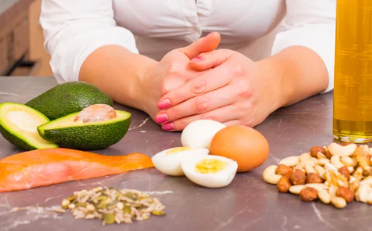 Trends
Trends
4+ MIN
15/11/2023
Plant-Based Omega-3 Vs. Marine Omega-3 - The Nutritional Differences
However, it is equally important to understand that not all omega-3s are the same. To determine the most beneficial omega-3 source for pets, it's first important to know the differences between plant-based and marine omega-3s. So, let's explore these differences and discover which source is best for our furry friends. The two most important omega-3 sources To begin with, it is important to understand the fact that omega-3 fatty acids predominantly come from two sources - marine organisms like krill, which are rich in EPA and DHA, and plant sources such as flaxseed, which are rich in ALA. Plant-based omega-3: A closer look Plant-based sources like flaxseed, walnuts, rapeseed, and chia seeds, contain omega-3 fatty acids in the form of alpha-linolenic acid (ALA). For ALA to benefit a pet's health, it must go through a series of complex metabolic reactions to convert into EPA and DHA which are anti-inflammatory. Unfortunately, this conversion process is naturally inefficient in dogs and cats. Marine omega-3: The superior choice? Marine omega-3s, such as those derived from fish, whales, seals, and algae are usually in the form of triglyceride-based EPA and DHA. Krill, however, is a remarkable marine ingredient that is rich in phospholipid-based EPA and DHA. Known as the "molecules of life", phospholipids play a crucial role as natural, integral parts of all human and animal cells. These phospholipids make it easy for pets to absorb and integrate the omega-3s from krill into their vital organs, where they maintain the strength, flexibility, and integrity of the body cells. The seven vital organs that marine omega-3s can have a positive effect on The health advantages of marine omega-3s Marine omega-3s offer many health benefits, including: Skin and coat health: Omega-3s can enhance skin hydration and reduce inflammatory reactions, and alter lipid composition in skin and fur cells. Cardiovascular health: EPA/DHA modifies blood TG, HDL cholesterol, plaque development, heart rate, and heart muscle functions to reduce cardiovascular risks. Cognitive and visual development: DHA is vital for brain and eye development by being an important building block for the eye, cognitive and behavioral function. EPA and DHA are vital for reducing inflammation in brain tissue and diminishing the amount of neuronal loss in aging. Liver functionality: Omega-3s aid in lipid breakdown to prevent fatty liver, enhance insulin sensitivity, and have anti-inflammatory effects in the liver. Kidney support: EPA and DHA promote healthy kidney function by inhibiting inflammation and reducing blood pressure. EPA reduces the production of omega-6-derived pro-inflammatory signaling molecules. Joint health: Omega-3s reduce mobility issues and joint pain by inhibiting inflammation. EPA and DHA also reduce pro-inflammatory signaling molecules and occupy the same enzymes that painkillers (NSAIDs) block to give pain relief. Recent research insights Recent research, including a study by Aker BioMarine on Alaskan Huskies, has shown the superior efficacy of marine-based omega-3s over plant-based sources in raising the omega-3 index, a measure of EPA and DHA levels in red blood cell membranes. More than this, a new study conducted by the Swedish University of Agricultural Sciences and Aker BioMarine wanted to determine what is the most effective source of omega-3 for pets. The research involved 45 Alaskan Husky sled dogs over four weeks and tested three different omega-3 sources: krill meal, fish meal, and flaxseed, each at similar inclusion levels in the Huskies' diet. The findings were clear: krill meal significantly outperformed the other sources, even at a lower inclusion level of 3%, raising the omega-3 levels in the dogs from 1.3% to an average of 2.4%. Fish meal followed, increasing the levels from 1.3% to 1.9%, while flaxseed showed no significant impact. Scientist Hanna Lindqvist concluded that the type of omega-3 added to pet diets does matter, and krill meal proved to be a more powerful ingredient, even in smaller quantities, demonstrating its potential to enhance the health benefits of omega-3 in pets. "The type of omega-3 added to pet diets does matter, and the phospholipid omega-3 in krill appears to be more effective than triglyceride omega-3 from fish or alpha-linolenic acid from flaxseed." Krill: A source for many other nutrients Not only is krill a great source of marine omega-3s, but it's also a great source of other essential nutrients, including marine proteins, choline, and astaxanthin. Moreover, Antarctic krill stands out as one of the most sustainable sources of marine omega-3s globally. Its sustainability factor adds to its appeal, making it an excellent choice for pet owners who prioritize both the health of their furry friends and the well-being of our planet. By: Qrill PET
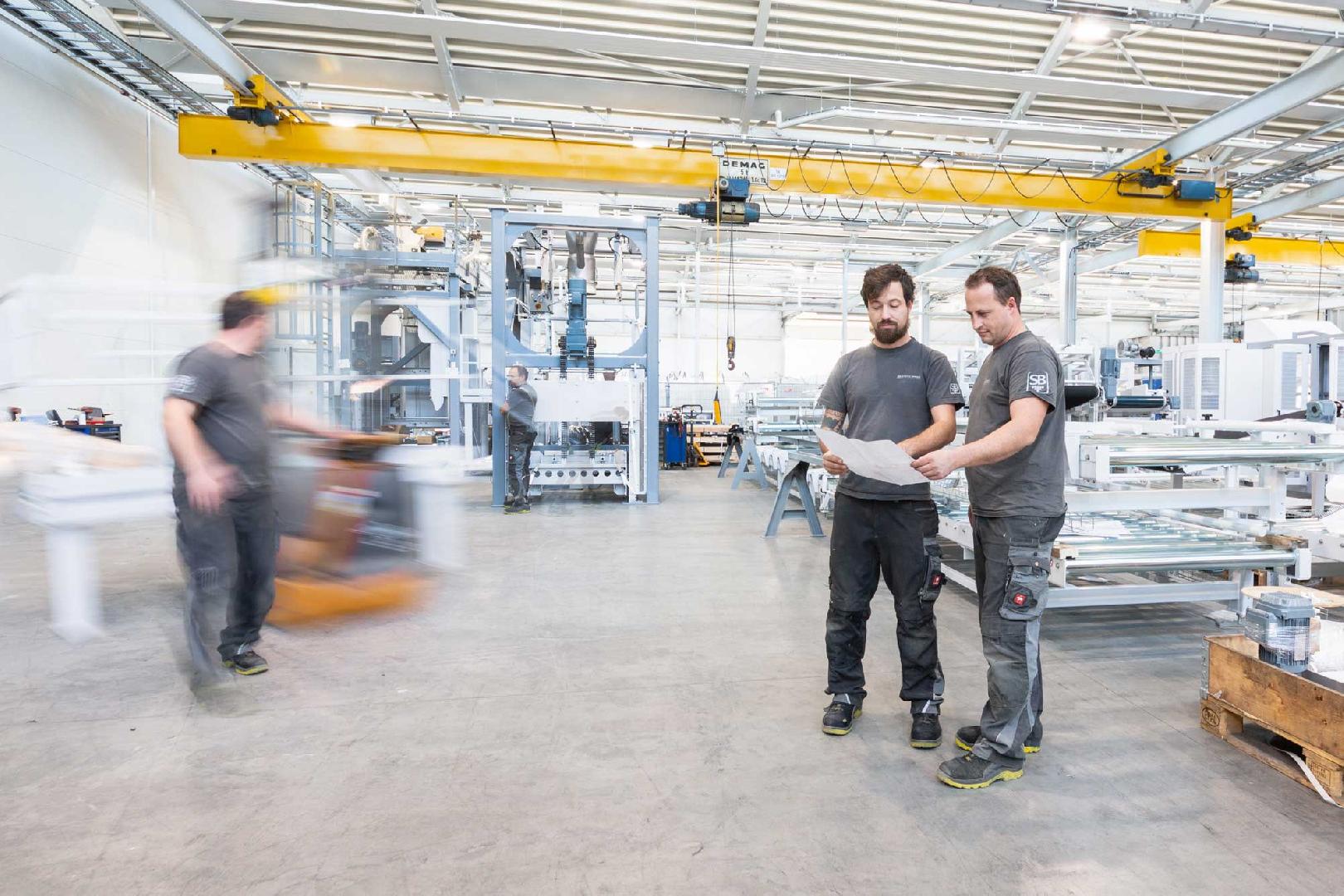 Packaging
Packaging
2+ MIN
13/11/2023
STATEC BINDER: A PIONEER IN THE PACKAGING INDUSTRY
Foundation and Company History The company was founded in 2008 as a joint venture between two renowned companies, BT Wolfgang Binder, and BINDER+CO AG. Both companies had already been active in the packaging and processing industry since the 1970s and brought many years of experience and expertise to the partnership. The merger created a new player in the packaging industry, STATEC BINDER. Over the years, STATEC BINDER has impressed with over 1800 successfully installed plants on all continents and in over 85 countries, underlining its global presence and expertise. The company continuously expanded its product range, from stand-alone machines to complete solutions for customers. Thanks to innovation, teamwork, and the pursuit of perfection, STATEC BINDER has always been able to meet the requirements of global markets and provide customized solutions for its customers. Innovation and Product Portfolio A key factor in STATEC BINDER's success is continuous innovation and the development of customized solutions for its customers. The product range of STATEC BINDER includes fully automatic as well as semi-automatic packaging systems for bags from 5kg to 50kg, BIG BAG filling stations, palletizing systems, and bag closing systems, which are developed specifically for customers' needs. Whether it is bulk materials such as grain, animal feed, fertilizer, plastic granules, or other materials, STATEC BINDER offers solutions for a wide range of industries. Quality and Customer Service STATEC BINDER places great emphasis on the quality of its products and services. The packaging solutions are manufactured in a production facility and are subject to strict quality controls to ensure they meet the highest standards. The company is ISO 9001 certified, which underlines its commitment to maintaining high-quality standards. In addition to product quality, customer service is another key factor that distinguishes the company. STATEC BINDER's customers appreciate the personalized advice, individualized customer services, and comprehensive support the company offers. Working closely with customers enables the company to better understand their specific requirements and challenges, and to offer customers an all-around carefree package once they have purchased the equipment. International Success STATEC BINDER's reputation extends beyond Austria, reaching a global scale. The company exports its packaging solutions to over 85 countries worldwide and maintains an extensive network of distribution and service partners across various regions, ensuring exceptional onsite support and guidance for its customers. This international presence reflects the trust customers worldwide place in STATEC BINDER's products and services. Conclusion STATEC BINDER is a company that stands out in the packaging industry for its innovation, quality products, and dedicated customer service. With a strong focus on the needs of its customers, STATEC BINDER remains a major player in packaging technology and will continue to play a significant role in the industry in the future. Source: All Pet Food Magazine
 Manufacturing Process
Manufacturing Process
3+ MIN
10/11/2023
ANDRITZ and Pet Food Innovation
ANDRITZ and the Future of Pet Food: Innovation and Sustainability at the Forefront The pet food market is constantly evolving, and the increasing demands require advanced processing technology solutions. ANDRITZ, as a trusted partner for hundreds of premium pet food producers globally, is at the forefront of this revolution. In a world where sustainability and digitalization are redefining industries, ANDRITZ stands out for its focus on both areas. The company not only commits to excellence in performance and quality but also prioritizes innovation and technological development. This is reflected in their goal to offer advanced technologies that result in efficient production, operational cost reduction, maximum energy efficiency, and environmental protection considerations. Backed by global specialists, ANDRITZ offers comprehensive solutions for pet food pelletizing, ensuring easy, safe, and efficient processes that quickly adapt to market trends. From raw material intake to the loading of finished foods, ANDRITZ equipment and systems stand out for their cutting-edge technology. These processing systems provide optimal results in food safety and traceability, ensuring both animal health and regulatory compliance. However, beyond technological solutions, ANDRITZ understands the importance of management and collaboration. With over 180 years of experience and a vast sales and service network globally, the company ensures a close and cooperative relationship with its clients. ANDRITZ's solutions are tailor-made, specifically designed to meet high production capacity and quality demands. This adaptability is made possible thanks to modular systems and multiple design features combined with specialized engineers' expertise. Process automation, another pillar of ANDRITZ, guarantees cost-efficient processing and consistent food quality. These automation systems offer complete traceability of ingredients and process parameters and represent a perfect fusion between technology and efficient operation. At the end of the day, ANDRITZ's promise is clear: "You know your product, we know productivity." With state-of-the-art technologies and a deep understanding of every process step, ANDRITZ positions itself as the undisputed leader in pet food processing solutions. ANDRITZ's Highlighted Technologies for Premium Pet Food Production VAC 1000/1500 for Super Premium Food: Precise control in the inclusion of high-cost liquids and powders, achieving significant savings in the pet kibble manufacturing process. Uniform coating across all kibbles batch by batch. Possibility of a higher inclusion of oils when using vacuum vs. the natural limitation of working at atmospheric pressure. Both appearance and end-product quality superior vs. other solutions like rotary coaters. Possibility to create new formulations and products due to the wide working range our VAC model oilers allow. Double Screw Extruder ExTs 616/718: Superior cooking control vs. single screw by achieving full starch utilization. Greater control and flexibility in the formulation by including a higher % of fresh meat or slurry. Superior mixing inside the extrusion barrels. Higher hygiene as it's self-cleaning. Greater working range in moisture percentage inclusion. Greater working range in fat percentage inclusion. CZD High-Efficiency Dryers: Independent drying control in each CZD zone. The market's lowest humidity dispersion percentage upon exiting the dryer, achieving less or equal to 0.5%. Modular dryer, so for future higher requirements, the dryer can be expanded. Controlled and even product bed filling thanks to the. Significant energy savings due to air recirculation, temperature and exhaustion relative humidity control. Thanks to CZD's advanced automation control, it's possible to know in real-time the energy consumption associated with product drying. ANDRITZ continues to innovate and adapt to the changing demands of the pet food market. With its focus on sustainability and technology, the company is positioned to continue leading in this field in the coming years. By: ANDRITZ
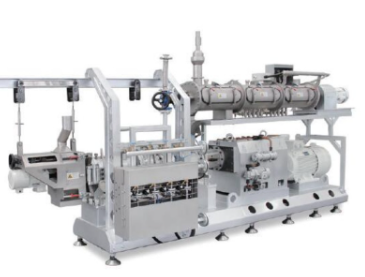 Extrusion
Extrusion
1+ MIN
10/11/2023
Famsun SJPS Series Twin-screw Extruder
FAMSUN Pet Food division is committed on machinery research, manufacturing, project engineering, factory construction and integrated solutions in pet food industry, create values for customers. As a leading integrated solution provider in pet food industry, FAMSUN undertakes pet food (dry food, semi-moist, extruded treats) and cat litter turn-key project. FAMSUN leads the market by technology, with experienced elite team and European & USA technical experts, through continuous innovation, to provide customers with professional, safe, systematic extruded pet food production solutions, customized environment-friendly and intelligent factory with high standards, high quality, high efficiency. They won the trust and praise from their partners/customers worldwide. The SJPS SERIES TWIN EXTRUDER is one of the highly efficient pet food extruders in Famsun's portfolio. Specially designed for formulations with a high content of fresh meat, we detail some of its advantages for pet food producers: Easy operation PLC and touch screen for convenient control; by-pass provided for avoiding blockage; easy operation, precise and reliable. High efficiency Optimal chamber groove and screw flight profiles, minimum SME input; efficient DDC conditioner and jacketed barrel with stabilized and facilitated extrusion, maximum energy utilization; unique suspending cutter, adjustment without down time. More flexibility Modularized barrel and screw structure with many add-ons, adaptable to varied high-fat or -moisture formulations; controllable temperature, pressure and density, minimizing reconfiguration acquired. You are invited to know more about FAMSUN PRODUCTS. Source: All Pet Food
 Market Information
Market Information
2+ MIN
09/11/2023
PLP Systems: When quality meets experience
The company focuses on developing customized systems talored to clients' specific needs, creating solutions for each project. PLP Systems invests as well heavily in R&D each year, to create new concepts and continuously improve existing technologies. Their dedicated team of engineers and techniciand are experts in dosing, mixing, spraying, coating and handling liquids and micro powder additives. Through R&D, PLP identifies key requirements and potential areas for innovation, they then design, test and optimize new solutions to meet demands for higher productivity, quality and sustainable processing. With a commitment to quality, PLP Systems builds all equipment to the highest standards. Each system is meticulously engineered and constructed from high-grade components to ensure maximum efficiency, reliability and a long operating life. Stringent quality control procedures and testing guarantee consistent performance and safety of all machines before shipping. After installation, PLP Systems provides full after-sales support and service to assist customers in getting the most from their investment. By establishing open and enduring customer relationships built on trust and understanding, PLP is able to support the long term success of their clients. Recently the company has increades its participation in fairs both in Italy and around the world, expanding its know-how, expertise and technologies to an even wider and more diversified audience. PLP Systems is convinced that through direct and human contact, lasting and solid relationships can be established. By continuously enhancing their knowledge and skills, PLP Systems will continue provide innovative and high-quality solutions to meet the changing needs of the pet food and feed industries. About PLP Systems By: PLP Systems
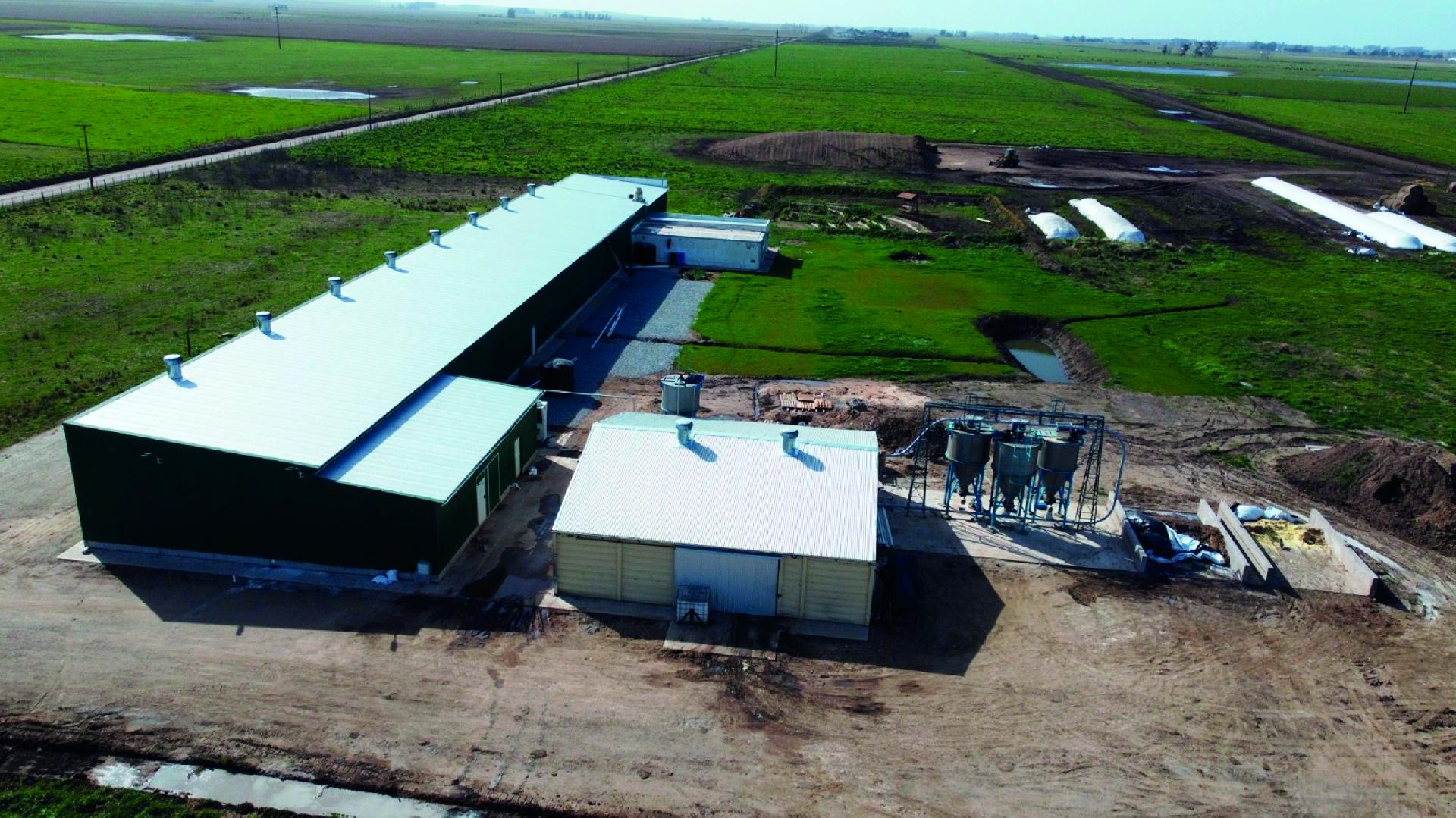 Trends
Trends
4+ MIN
08/11/2023
Procens, the company that produces 100% natural insects’ protein flour and oil, through a circular economy model
The key to success? The development of bioplants for breeding black soldier fly larvae to convert food waste into quality protein for animal feed and biofertilizer for soil regeneration through a 100% natural and sustainable process. Recently, they sealed their alliance with VitalCan, a leading company in the sector, to develop innovative products based on natural insect ingredients. They also signed an agreement with a firm from Balcarce to convert their potato waste, peels, and defective fries, into an organic amendment to incorporate into potato crops. Towards a circular economy in the pet food industry Procens creates solutions for a market segment seeking new sources of healthy and sustainable insect-based proteins In the current context where sustainability is increasingly important, both for producers and consumers, collaborations such as the one achieved with VitalCan are a great step forward so that companies already established in the market can begin to offer balanced feed based on insect proteins in some of their products. Thus, this sustainable production model development in the industry remains at the center of the intentions, seeking to promote a circular economy that transforms food waste into high-quality protein for animal feed and organic amendment for crops. With its products, Procens makes it clear once again that, from the union of innovation, collaboration, and a clear purpose, initiatives can be generated to achieve systemic change and a regenerative economy. The company demonstrates how by-products can be transformed into new resources with high added value through local development, reducing the environmental footprint and benefiting society as a whole through the collaboration of an entire ecosystem. So, how does this process work to transform food waste into protein flour and insect oil? Insect transformation plant The first step, as stated by Julien Laurencon, one of the founders of the project, is to recover food waste from potatoes, fruits, and vegetables for example. These are finely grinded and mixed, which allows them to obtain a balanced substrate to feed the larvae and ensure their optimal development. We achieve this without adding any chemicals or antibiotics, only with a natural fermentation process in which efficient microorganisms intervene. On the other hand, there is the breeding of flies (adults) in captivity and under controlled conditions. Flies live an average of ten days. This endemic fly, the Black soldier, (Hermetia Illucens) does not feed in its adult stage, so it does not carry contamination, and its only purpose is to mate and lay eggs. 'We give them ideal conditions, with 30 degrees of constant temperature, more than 70% humidity, and 12 hours of light and 12 of darkness so that they can reproduce. They lay eggs in a place adapted for this purpose, which are harvested daily to be hatched, recovering what is called a neonate, a newly hatched larva, tremendously efficient to biodegrade food waste. With our technological development, they reach maturity in only 12 days multiplying their weight by ten thousand, eating the substrate that we prepare from the mix of food waste.' This leads, then, to the biodegradation process: the larva eats and defecates the matter processed through its digestive system while accumulating protein and fat in its body to prepare for its pupation cycle to transform into fly. 5% of the eggs are recovered to maintain what we call the breeding stock (the colony of flies to continue having eggs, larvae, and flies); The remaining 95% goes to this growth process to finally harvest the larvae once they reach maturity. On the one hand, the biodegraded matter will be processed to become an organic amendment for soil regeneration (like a biofertilizer) that will allow reducing the use of chemical fertilizers while improving the biology of the soil and allowing carbon sequestration. On the other hand, the larvae are an excellent source of protein and fat. Fat is extracted through a centrifugation process. The product obtained is an oil of similar quality to coconut oil. The leftover dough is an expeller that is dried and ground to get a 58% protein flour used for animal feed. - 58% easily digestible animal protein - 100% natural product: without antibiotics or genetically modified organisms (GMO) - High palatability - Hypoallergenic property - Alternative for animals with food sensitivities - Antioxidant potential - 41% lauric acid, modulator of intestinal flora - 100% natural product: without antibiotics or genetically modified organisms (GMO) - High palatability - Has antimicrobial activity At Procens, for every 1,000 kilos of waste with which they feed the larvae, they achieve 150 kilos of fresh larvae that will become 50 kilos of protein flour and about 16 kilos of oil and generate 140 kilos of organic amendment. Procens, a company that works to help transition to a more sustainable animal feed industry At this first stage, its products are aimed at pet food and fish, but in the future, it will also be found for pigs and chickens (in the early stages of breeding). Without a doubt, the company, which has just raised its evaluation to certify as a B Corp with a score of 106pts, well above that requested, is making a lot of progress on the Latin American continent to be able to promote a circular economy model where the current production does not negatively impact future capacities and is on the way to fulfilling its purpose of preserving, fostering and regenerating life on earth. For more information, visit their website. Source: All Pet Food Magazine
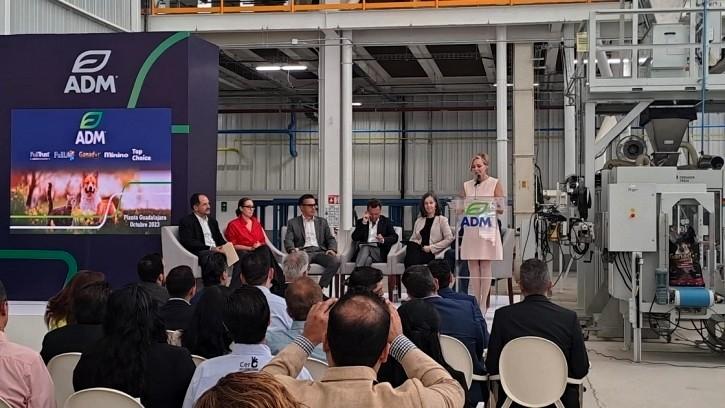 Manufacturers
Manufacturers
2+ MIN
07/11/2023
ADM amplifies pet food production with $33m investment in Mexico
Jorge Martínez, President of ADM's pet nutrition segment, underscores the strategic importance of Guadalajara, expecting the investment to triple the company's capacity in the burgeoning pet food market. ADM is deepening its footprint in the pet nutrition sector with a significant $33 million investment in a new production line in Guadalajara, Jalisco. Set to increase its workforce by 65%, the move bolsters the production capabilities for renowned pet food brands and paves the way for ADM's future product innovations. The company's decision to expand in Jalisco, a growing economic hub in Mexico, strategically positions it for broader reach within Mexico, Central America, and Colombia. ADM Invested $33M to build and open a new pet food production line at its existing facility in Guadalajara, Jalisco , Mexico Jorge Martínez, President of ADM's pet nutrition business, emphasized, "Without a doubt Guadalajara is a strategic, economic location for ADM in Mexico. The integration of this new production line adds range and flexibility to our capabilities in Mexico and enables ADM to triple its capacity and give us wider international visibility within the pet food market." The facility will be equipped with new technology such as automated systems to avoid the use of forklifts and manual hauling, and work practices are aligned with NOM-036, wich is a Mexican regulation on ergonomic risks factors at work This venture embodies ADM's activities on sustainability, innovation, and community enrichment, setting an important step in the pet nutrition industry. The Mexican pet food market is foreast to expand in volume by 4 % and in value by 8% over the next five years , with ADM´s business anticipated to grow above those ranges, added Jorge Martinez. by ADM
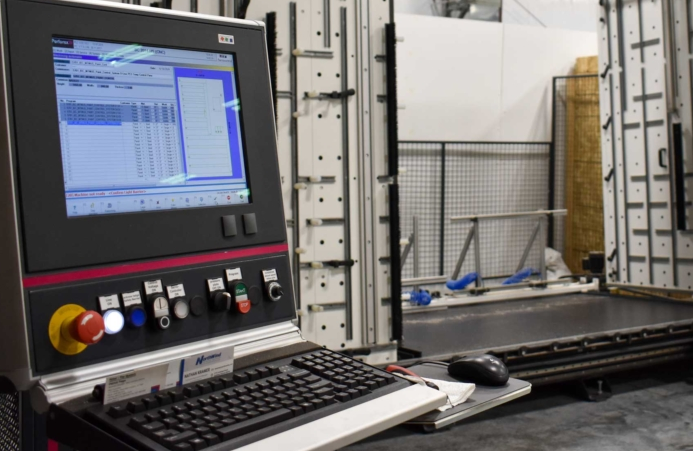 Manufacturing Process
Manufacturing Process
5+ MIN
06/11/2023
Manufacturing execution system capabilities
MES solutions replace traditional paper-based manufacturing procedures and implements a proactive approach to manufacturing execution. Sometimes manufacturers implement reporting functionalities that fall within the scope of MES and sometimes a full-scale MES solution is integrated across the entire plant. Regardless of the size of the solution, the results of implementing MES include decreased costs and increased support for continuous improvement and lean initiatives. MES is used in conjunction with ERP and SCADA systems, bridging the daily plant operations to the rest of the business. Manufacturing Execution Systems can tie into existing batch management systems, such as BatchLOGIX®, and use the existing inventory and production information to give further insight into yield and production metrics. MES connects existing ERP systems, PLCs, and databases. The combined data from those sources can create unique metrics, reports and dashboards that streamline operations, improve productivity, and ensure quality. Using a versatile platform like Ignition Perspective, the capability exists to connect all those data sources, create flexible dashboards, custom reports, custom modules, and Ignition's platform is designed for mobile access. REAL-TIME DATA MES platforms provide real-time production information. This valuable information opens the door for quick production snapshots. Dashboards combine real time operating rates and statuses with features like historical run information and production goals. Doing this provides an efficient way for a user to quickly see production status and identify areas that need attention. HISTORICAL DATA With comprehensive access to plant-wide data, MES offers extensive reporting capabilities. This is another area where the Ignition platform is helpful. Leveraging Ignition's Reporting module, information can be gathered from all the different data sources (ERP, Control System, and SCADA) allowing for the creation of tailored reports that effectively convey data for analysis. Through Ignition's broad array of device drivers, information from data from all parts of the plant can be logged and displayed in a central location. Additionally, the Ad Hoc trending tool proves to be a valuable asset, facilitating easy trend analysis of data points from all sources and saving those trends for later analysis. PERFORMANCE ANALYSIS Centerlining includes adjustable thresholds for each device set the acceptability and alert levels for each indicator. Selected KPIs (key performance indicators) such as Right first time (RFT), Rework, Scrap, Process capability (Cpk), and Overall equipment effectiveness (OEE). With one click, the dashboard can provide a detailed analysis of causes of shutdowns and rejects, batch quality rates, and other production indicators. COMMON MES FEATURES With all this data, both real-time and historical, there are many different modules that can be implemented. The goals and priorities of each plant and workstation guide which modules should be implemented or if a custom module needs to be developed. Below is a list of common modules. Scheduling Provides a global view of the planned production orders. This module can include changeover information, anticipated production time, equipment and materials needed with specific job details to complete the order. Work In Progress (WIP) Inventory Management Track and manage inventory through the different stages of production. MES accomplishes this by helping management fine-tune forecasting by providing real-time inventory audits. With the connection to the ERP system and the control system, validating the inventory levels between the two systems is now automatic. This eliminates the need to manually verify inventory levels on the production floor with what is on the books. The system can also verify materials will arrive in time to complete orders by looking at the delivery data on purchase orders and running it against the upcoming production schedule. Recipe Management A recipe consists of a list of ingredients, ingredient amounts and sequence for combining those ingredients, and the amount to be made (batch size). Create consistency from product to product and run to run as well as make the best use of resources to minimize waste and streamline the manufacturing process. Production Tracking and Dispatch Manage the bidirectional flow of production data in real time between the ERP and the plant floor. Lot Tracking and Tracing From raw material receiving through final product, lot numbers are traced throughout the entire production facility. MES allows for quick recording of batches of raw material, semi-finished products, and finished products, utilizing product genealogy which tracks raw materials, equipment used, dates, quantities, lot, and serial numbers. Quality management and Control Manage the quality of manufacturing processes and units including quality deviations and exceptions. Integrate quality check reminders and recordings for QA. These can be as automatic as implementing density and moisture sensors or more manual with an alarm signaling the operator to complete quality assurance (QA) checks and record them in the system. Each records the information to the MES system for the QA team. Preventive Maintenance Optimize the planning of preventive maintenance operations to reduce the impact on manufacturing. OVERCOMING COMMON CHALLENGES TO IMPLEMENTING MES Implementing a Manufacturing Execution System is a large undertaking and to provide the best solution, collaboration between the integrator and the manufacturer must be frequent. A common challenge is providing the right information and tools to the right audience. When developing dashboards and reports, it is very important to remember who is using the feature and what the goals and priorities are. An operator will want to see different metrics and widgets than someone in a management role. When developing dashboards and reports it is very important to remember who will be using the feature. Separate dashboards for different groups can be created, or widgets can be dynamically hidden/shown depending on the log in permissions and who is viewing the application. Often facilities have used multiple integrators and software systems throughout the plant. This poses a challenge to gathering data in an accurate and efficient way, as there are a variety of sources. NorthWind maintains consistency wherever possible and keeps documentation on where metrics are pulled in from. Documentation is available straight from the MES project. The user can see a description of how a widget works and where the information is being pulled from, whether it is from BatchLOGIX database, a customer's existing ERP system, or a PLC Program. A key to overcoming these challenges is to have open and effective communication with plant personnel to ensure there is clarity on what information is needed. This starts with setting a detailed scope for each area of the system to avoid unnecessary and potentially costly distractions. NorthWind provides a detailed design/development/deployment process and holds meetings with the customer throughout each stage to discuss the project progress and steps to be taken to reach the next stage. Manufacturing execution systems identify inefficiencies and optimize production. This powerful system can be everything from Overall Equipment Efficiency (OEE) for one area of a plant to a fully integrated solution with a paperless plant floor and everything in between. Implementing these features takes deep process and control system knowledge and because every plant has different processes, machinery, KPIs, and process targets the best solution is going to be a tailored fit. At NorthWind we utilize production and process data for plant optimization with a manufacturing execution system developed for you, with you. Learn more about NorthWind's MES Solution. By: Sydney Bosworth Source: NorthWind Technical Services
 Market Information
Market Information
5+ MIN
03/11/2023
Symrise Pet Food Eco-friendly plant in Colombia celebrates its 3 years
The factory in Colombia was the first to apply these new standards, including LEED certification, one of the most prestigious certifications of sustainable building systems. Today, the company is proud to celebrate the 3rd anniversary of this plant model. LEED Certification The factory built in Colombia obtained LEED Gold certification at the beginning of 2022. The Leadership in Energy and Environmental Design (LEED) sustainable building certification system was developed by the U.S. Green Building Council (USGBC) and began implementation in 1993. It currently offers four types of certifications (Certified, Silver, Gold, and Platinum), according to 7 criteria: Sustainable Sites, Energy and Atmosphere, Water Efficiency, Materials and Resources, Indoor Environmental Quality, Regional Priority, and Innovation. Christophe Salaün, General Manager of Symrise Pet Food Colombia, highlights the importance of Symrise Pet Food's choice to follow LEED standards: "Not only is it one of the most widespread green certification systems in the world, it is also one of the most demanding, reflecting Symrise Pet Food's commitment to a sustainable industry that truly preserves the planet's resources." Salaün adds: "Some examples of key actions implemented that meet LEED criteria include rainwater collection and use for sanitation facilities, high-level treatment for liquid disposal, optimization of site energy consumption through specific ventilation systems, heating and lighting, and the installation of photovoltaic systems." Water and energy Two of the main aspects that contribute to an eco-friendly industry are the efficient use of water and energy saving. In this sense, for the Colombia plant, a water well 173 meters deep was excavated that allows pumping groundwater through its own treatment plant, capable of reintroducing much of the necessary water into the circuit. "In this way, we can reduce the amount we take from municipal water supply plants to the point that today we are taking about 90% of the water needed for production from the well," explains Christophe Salaün. On the other hand, rainwater is collected and used for sanitary facilities and the air purification process. In addition, it is used for irrigation of vegetation planted around and inside the plant. In terms of energy, the installation of 240 solar panels provides the facilities with 13% of the electricity needed. A natural ventilation system generates optimal climate control inside the building, while an intelligent control system monitors the site's water and energy consumption. Green areas on roofs and facades improve air quality, help reduce noise, and save energy. Finally, as environmental compensation, 1,020 trees at least 1 meter high were planted. CO2 emissions were reduced by 33%. Closer, greener The Colombian plant serves the Andean region, supplying products to Ecuador, Peru, Colombia, and Venezuela. Before its construction, the region received products mainly from Argentina and Brazil. Following the company's motto 'The Closer, the Better,' which aims to be close not only to its customers but also to its suppliers, the Colombian plant saves gas emissions from transport: around 65% of sales are located less than 500 km or less than 8 hours by land transport, while about 52% of customers in the Andean region are in Colombia. The local selection of ingredients also provides a significant reduction of ecological stress in the production of the product – 50% of the raw materials used are in Bogotá. Eco-designed products In addition to setting eco-friendly building standards, Symrise Pet Food developed a tool that measures the environmental impact of the product throughout its production chain. Called the Eco-design Matrix, it evaluates and supports Marketing and R&D teams in improving the environmental impacts of products throughout their life cycle, from supply to delivery to the customer. This tool allows Symrise Pet Food to know the footprint data in each of the four main steps of the product life in which it has influence – sourcing, manufacturing, packaging, and logistics– and from seven environmental impacts: carbon emissions, land use, water use, acidification, abiotic depletion, eutrophication, and particulate matter. "With the Eco-design Matrix, we found a new driver of innovation," explains Anderson Conejo, LATAM Marketing Manager. "We can now select ingredients and design new products taking into account not only functionality and economic performance, but also environmental impacts over the life cycle." With this tool, Symrise Pet Food is now able to support customers who want to promote the sustainable development of their products. Joint effort After it was confirmed that July 2023 was the warmest month on record, the Secretary General of the United Nations, António Guterres, warned: "The era of global warming is over, and the era of global boiling has arrived." A concerted effort is now essential to combat climate change and achieve truly sustainable development. That is why Symrise Pet Food proposes to make this trip together with all the actors involved in the pet food industry. The challenge is not minor: the growing demand depends on a limited availability of raw materials. On the other hand, regulatory and sanitary restrictions on the production and export of products are another challenge that must be faced. Finally, pet parents today demand natural, ethical, and transparent products. Symrise Pet Food proposes to consider these difficulties as an opportunity for collaboration that not only results in a product of excellence, but that contributes to caring for people, pets, and the planet. Its goal is to work together to bring to market solutions that provide sustainable sourcing, are secure, and generate long-term value. The efforts poured into the Colombian plant have not gone unnoticed: it has recently been nominated for the awards for "Business Environmental Excellence" of the Ministry of Environment of the Municipality of Tocancipá. The local environmental authority reviewed the environmental data (carbon footprint, water, energy, gas, waste management, treatment plants, boiler) and made a tour of the plant. "We were informed that we are going to be nominated for the award for corporate environmental excellence," said Christophe Salaün. This nomination was made by the local environmental authority in November, after visiting all the companies operating in Tocancipá. 'The election will be in early 2024. We hope to have good news', added Salaün. From this first model experience for the entire Symrise group, Symrise Pet Food is building its new plants (the most recent in Mexico and Brazil) following LEED standards, with the intention of contributing positively to a better world for future generations. Symrise Pet Food is a global leader in sustainable high-value solutions that improve pets' well-being and owners' satisfaction. The company offers multiple products and services that improve palatability, pet nutrition, and pet food protection. Symrise Pet Food is present on 5 continents with 1,750 employees, 32 sites, and 4 expert measurement centers with 1,100 dogs and cats. Source: All Pet Food Magazine
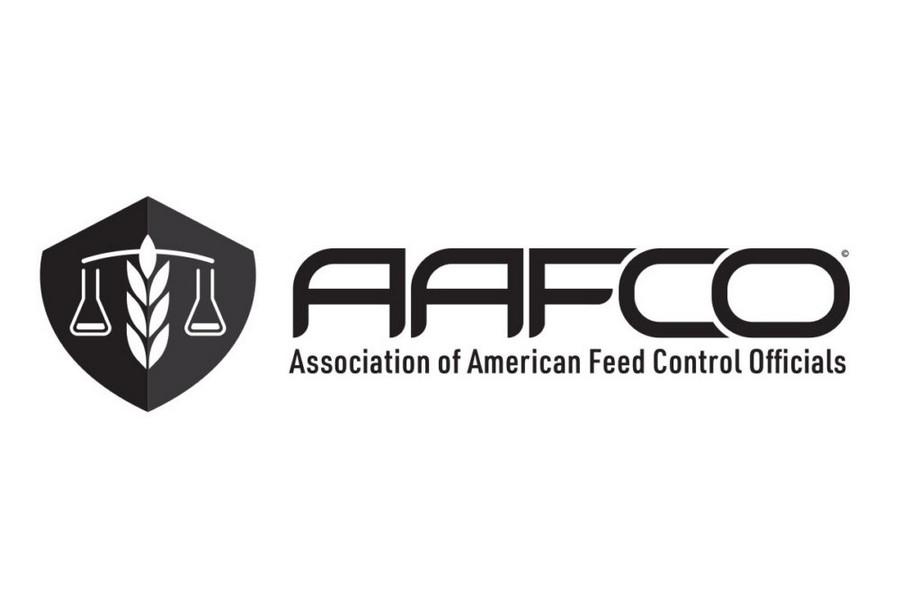 Micro Ingredients
Micro Ingredients
4+ MIN
02/11/2023
Innovation and Insight: The AAFCO Meeting's Impact on Pet Food Ingredients and Regulations
Several terms and ingredient definitions changed, or were approved either tentatively or officially. Additionally, there was much discussion about low-copper and human grade claims. Read on to find out about how these changes might affect your business. Below is a description of the terms and ingredient changes made by AAFCO. Freeze Dried, also known as lyophilized or cryodessicated, is now a process term. Freeze drying involves a low-temperature dehydration process where the product is frozen, brought to a lower pressure, then has its water/moisture removed via sublimation. Shelf stability is achieved via reaching a critical moisture/water activity level. The official definition of Black Soldier Fly Larvae Oil has been expanded to include its use in adult dog food. Meat and Bone Meal definition was updated and the tentative definition includes the statement, 'It is a source of protein in animal diets.' The language that was removed from the definition includes, 'It shall contain a minimum of 4.0% Phosphorus and the Calcium level shall not be more than 2.2 times the actual Phosphorus level' and the maximum crude fiber guarantee is no longer required. Alpha-Lipoic Acid was added to table 101.1. The ingredient received FDA-CVM's No Questions Letter, allowing its use as a nutritive antioxidant in adult dog food. (T60.119) Dried Cricket received a tentative definition and a motion passed to accept the ingredient. This definition will be voted on by the membership at the Mid-Year meeting next January. Most states accept tentative definitions so this ingredient will be allowed to be used in adult dog food, but there are some states that won't accept the use of dried crickets until the definition becomes official. There was a fascinating presentation by Mill on Dried Recovered Household Food and the motion passed to accept this as a new tentative definition for use as a poultry feed ingredient (T40.113). Revamping Standards: Fresh Takes on Ingredients and Regulatory Practices Common Food Index recommendations were passed for immediate inclusion in the OP and ODI. It includes a list of ingredients that are considered common or usual and can be utilized in pet food. Some examples include: shiitake mushrooms, asparagus and cherries. The protocol for accepting GRAS (Generally Recognized As Safe) ingredients has been revised. Once the FDA No Questions letter notice is published, it may be presented to the IDC for inclusion in section 101 at the next scheduled IDC meeting. There will no longer be a need to wait for the FDA to post the redacted notice. A workgroup was established to determine the feasibility of exempting AAFCO Ingredient Definitions from the tentative status requirement. The new Memorandum of Understanding (MOU) will include a public comment period which will allow anyone to review information earlier. There is concern that the public comment period will increase time rather than reduce time by the estimated 6 months. There will be an update at the October IDC meeting. The Statements for Uniform Interpretation and Policy (SUIP) are under review by a workgroup within the Model Bills and Regulations Committee. SUIP 7 Chews, Bones and Toys for Pets and Specialty Pets was recommended to be incorporated into PF3(b) of the Model Bill but did not pass at this meeting. The IDC is now tasked with creating definitions for ash, acid insoluble ash, air ashed, sulfated ash, and a new feed term for rawhide. Pet Food Committee Hot Topics The primary discussion at the Pet Food Committee revolved around a low copper claim addition to PF10 Descriptive Terms. (d) Low Copper A dog food that bears on its label the claim 'low copper,' 'low in copper,' or words of similar designation shall: (1) Be substantiated as nutritionally adequate for one or more life stages in accordance with Regulation PF7; and (2) Contain a maximum of no more than 15 mg copper/kg DM and no more than 3.75 mg copper/1,000 kcal of metabolizable energy; and (3) Bear on its label in the Guaranteed Analysis in accordance with Regulation PF4 a guarantee for the maximum amount of copper in the dog food. There was significant discussion regarding this addition. Various perspectives were presented, including a suggestion to change 'low' to 'controlled' so as not to be confused with drug language or with prescription diets formulated with copper levels below the minimum required. The argument against this was it matches the current 'low calorie/low fat' claims currently permitted in PF10. Additionally, a discussion surrounding challenges in establishing mineral tolerances occurred because there isn't data to support the numbers established by the workgroup. It was argued the amounts are lacking scientific merit and if this does move forward, the products should only be available in veterinary channels. The workgroup was charged with re-reviewing the expert panel report and deciding on language at or before the next meeting in January 2024. Human Grade claim substantiation can continue to be submitted to each individual state or brands can choose to participate in the Process Verified Program (PVP) through the USDA Agricultural Marketing Service. USDA has received several inquiries; however, no company has received approval. The main challenges include development of the Quality Management Systems (QMS) manual and the PVP requirements. It was mentioned that companies were not aware of the cost, which is $155 per hour, plus travel costs. If a company does choose to go this route, annual re-substantiation is required. The workgroup is seeking volunteers to join and offer more guidelines or educational information on the process. by AAFCO
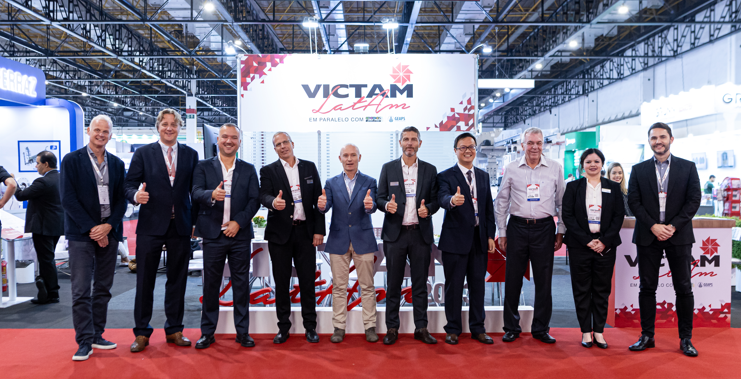 Market Information
Market Information
7+ MIN
01/11/2023
Innovation, sustainability and business in the animal nutrition and grain processing sector marked the first edition of VICTAM LatAm
The first edition of VICTAM LatAm brought together during three days – from October 3rd to 5th – the main Brazilian and international players, from industry professionals, technicians, academics, logistics operators, entrepreneurs, as well as producers related to these markets in an event that emphasized technological innovation, sustainability, networking and business. VICTAM events have a long tradition of being the industry meeting point and the propeller of business and technical development in markets such as the Netherlands, Thailand and Turkey. Now the event reached Latin America, more specifically Brazil, with the goal of fomenting the interaction between local industry and international players. "We were positively surprised by the quantity and quality of visitation. We received more than 4,300 highly qualified professionals from the animal nutrition and grain processing industries from all over Latin America. We understand that this expressive visitation is a reflection of the quality of the companies from Brazil and other countries that are exhibiting in the show and of the quality of the technology innovations in equipment for the processing, storage and transportation of grains and animal feed shown here", said the Managing Director of VICTAM Corporation, Sebas van den Ende. The first edition of VICTAM LatAm also received many international visitors from several neighboring countries, including Argentina, Paraguay, Uruguay, Chile, Peru, Colombia and even Mexico, who came to see equipment never seen in this region. Innovation & Business Another factor that marked the VICTAM Latin American edition was the volume of business generated. "The debut of VICTAM Latam in Brazil was a great success. Our expectations were exceeded in terms of qualified audience, business generation and renovation of the booths for the 2025 edition. We received buyers from all over Latin America, who came to check out the machines and equipment, in order to make new purchases' evaluated the Managing Director of Interlink Exhibitions - promoter of VICTAM LatAm 2023 in Brazil , Cassiano Facchinetti. According to Facchinetti, next edition of VICTAM LatAm will take place in September 2025, with an increase in the exhibiting area, exhibitors' booths, and participation of new companies. "We can already say that VICTAM LatAm has become the largest and main event for this industry in Latin America!". VICTAM LatAm gathered in about 10,000 square meters, more than 150 national and international companies, representing about 250 brands, such as AGI, Andritz, Buhler, CPM, Equitec, Evonik, Famsun, Ferraz Máquinas, Kahl, Van Aarsen, Vantec, Wenger, Zheng Chang, among many others. These key players presented their cutting-edge solutions and technologies. Some of the innovations presented by the exhibitors were: Equipment and technologies for silo monitoring: Grunn, official representative in Brazil of Bin Master, Electro-Sensors (United States), Tandler, Siko, Kipp, Motrona, Meister (Germany), and Zimm (Austria), show novelties in equipment and technologies for monitoring silos. Sales director of Grunn, Letícia Fatichi said that the Brazilian market has a "huge potential for growth, since there is a significant lack of storage capacity". "If we consider the data from the National Supply Company in Brazil (CONAB), the country should have 40% more silo structures. But there is a challenge to face: incentive in Brazil the awareness regarding the importance of incorporating monitoring equipment safety into the industrial dynamics. Compared to the USA, Brazil registers an average of 4,000% more facility accidents. It is urgent to implement mandatory safety regulations," said the head of the company's sales department. Equipment and technologies for research and diagnosis: Developer of differentiated, high-value solutions for life science research and diagnostics, Bruker Corporation brought to the show microorganisms identification technology, such as fungi, bacteria, yeasts, and for origin traceability and hygiene control in food and beverage production lines. "Microbiology already has a great entry in sectors such as clinics and large companies, and the participation in events such as VICTAM LatAm opens the possibility of talking about the advantages of this technology", commented the technician in Sales and Application of Bruker do Brasil, Rodrigo Oliveira. Mixers, dryers, heaters: Companies such as Becker Metalúrgica Industrial and Forberg presented their complete lines of equipment. "We have already participated in editions of VICTAM held in the Netherlands, Thailand and Turkey, and we are now in Brazil because we understand that this is a huge market in which we want to participate. In only two days of the show we were able to make solid contacts with local companies that were interested in our product line", said Forberg's sales director, Vladimir Jozim. For Becker's Commercial Director, Antônio Carlos de Campos, who has visited VICTAM events in other countries, the Latin American version of the show is interesting because it creates perfect conditions to explore international partnerships. "It is important for the local market to have access to the trends, knowledge and technologies exhibited here; it is a great opportunity to step into a higher level of networking and business," he said. Animal feed additives: companies such as Atias Química and Evnik, dedicated to the production of animal feed additives, presented innovations in favor of the quality of creation. Vertical cultivation: One example of innovative processing was presented at the show by the Dutch Insect Engineers. The technology consists of an entire structure, equipment, and climatic system for the breeding of black soldier fly on a commercial scale. Machinery and equipment: Paraná Industrial presented its complete product line during VICTAM LatAm 2023. The company highlighted the Self-Cleaning Mug Lifter, which facilitates and improves product loading, ensuring a reduction in waste retention. Haver & Boecker, on the other hand, focused on equipment for bagging pet food. "During the show we had a very specialized audience, searching for animal nutrition solutions", commented the company's sales engineer, André Domingos. Information, sustainability and competitiveness VICTAM LatAm 2023 also offered to the visitors an extensive program of conferences with seminars, workshops and debates. "We provide a complete experience in terms of innovation, technology, knowledge, networking, and business opportunities," said Sebas van den Ende. VICTAM and Perendale Publishers Ltd. held the Pet Feed and Aquaculture Feed Production Conference. In three days, leading experts in the sector addressed topics such as: the differences in the design of plants for the production of PET and aquatic feed; nutrition, sustainability and Circular Economy; the importance of probiotics in aquaculture; grinding, screening and particle size control in the optimal preparation of feedstock for aquaculture feed and pet food; micro-ingredients; pet food coating; pet food extrusion; food safety; ways to save energy in the feed milling and pelleting process; among others. In partnership with the global grain community GEAPS, the International Educational Program on Grain Quality, Processes, Storage and Equipment was carried out, in which topics such as technologies aimed at maintaining grain quality in a tropical climate were addressed; the protection of process equipment against dust explosions; combustible dust safety in the grain industry; solutions to problems in silo bridges; ways to maximize the production of bucket elevators; simulation technologies in the handling of dry bulk; among others. EMBRAPA (Brazilian Agricultural Research Corporation) participated in VICTAM LatAm 2023 as the curator responsible for the conference program that dealt with business opportunities in the animal protein chains (dairy cattle, beef cattle, pigs, goats, and sheep), in the poultry and fish chains, animal nutrition, and grains (soybean, corn, and sorghum). The International Feed Technology Conference (IFTC), organized by the University of Wageningen, brought together a team of professors and PhDs who provided visitors with information on issues related to animal nutrition and feed technology in Western Europe; recent developments in pig and poultry feed; the main challenges for the dairy cattle industry in South America; mycotoxin control and food safety in South America. The non-profit International Responsible Soy Association (RTRS), which promotes production growth, trade and use of responsible soy, brought its Annual Conference to the event and discussed topics such as: national legislation in Latin America and how they compare to the new European Union regulation on deforestation-free products; how different countries intend to respond to the EUDR requirements; responsible production of responsible soy; sustainability and regenerative agriculture; among others. In the Theater at the exhibition floor a unique seminar, organized by Perendale and Victam took place, Feed Milling Maximized. This seminar presented three keynote presentations along with eight quick-fire updates on equipment and technologies used in modern-day feed milling that improve efficiencies while maximising output. VICTAM LatAm 2025 has already set a date "We are very pleased with this first edition. We had great adhesion from leading companies in the sector and excellent visitation, a specialized public with decision-making power. Brazilian and Latin American markets have a great potential for business, which goes beyond the country's borders, and the companies from the countries present at the show, such as the United States, China, the Netherlands, Germany, India, are now convinced that it is strategic to participate in Victam LatAm to be part of this market", says the Managing director of VICTAM Corporation, Sebas van den Ende. The next edition of VICTAM LatAm will take place from September 16th to 18th, 2025, at the White Pavilion of Expo Center Norte, in São Paulo. "The volume of renovations exceeded the capacity of the red pavilion, where we are today. The 2025 edition will be 50% larger in square footage," says Facchinetti. VICTAM LATAM 2025 September 16th – 18th Expo Center Norte - Pavilhão Branco - São Paulo/SP - Brasil. About VICTAM Victam events are owned by the Victam Foundation, which is a Dutch non-profit organization dating back to 1964. The Foundation's goal is to provide financial support for innovative projects to non-profit applicants such as institutes, universities, and colleges. Also, the awarding of individual scholarships. The Foundation seeks positive contributions to the technological development of industrial sectors in the milling of grains and other raw materials in the broadest sense of the word and in the production of animal feed and human food. In 1965, the first Victam exhibition was organized in Utrecht, the Netherlands. The first event in Bangkok, Thailand, was launched in 1994 and in Istanbul, Turkey, in 2021. To learn more, click here. Source: VICTAM LatAM
 Market Information
Market Information
3+ MIN
31/10/2023
HILL's PET NUTRITION opens new smart factory in Tonganoxie to meet global pet owner demand for science-led nutrition
Located on more than 80 acres, the 365,000 square foot, fully designed smart facility will increase the company's production capacity for canned pet food and provide a runway for continued expansion of Hill's Science Diet and Prescription Diet brands. "It's only appropriate that as we celebrate Hill's 75th anniversary, we are able to unveil the next chapter of smart manufacturing innovation in the pet food industry," said John Hazlin, President and CEO of Hill's Pet Nutrition. "The Hill's Tonganoxie plant helps set the stage for the continued growth of our science-led nutrition, increasing our capacity and our ability to better serve the evolving needs of pets and pet owners in the United States and around the world." The new Hill's Tonganoxie plant marks a step change in strategic automation and technological advancements in the pet food industry. The new Tonganoxie facility was fully-designed to be 'smart' – including: Artificial Intelligence to power a digital food safety vigilance system Automation and robotic devices Enhanced Food safety systems End-to-end digital process/safety monitoring The new technology and processes will help to improve speed to market by shortening the production cycle, while also offering long-term flexibility to innovate new formats and products that help deliver on the company's mission to support the health and wellbeing of pets. Kansas Governor Laura Kelly, who attended the ribbon cutting ceremony at the plant today, said: "This investment by Hill's Pet Nutrition is a testament to my administration's success in creating a pro-business economy, including for the animal health industry," said Governor Laura Kelly (Kansas). "I'm delighted our unique Animal Health Corridor continues to expand, growing our economy and supporting communities like Tonganoxie." Among the more than 170 varieties of wet pet food the plant will make, it will produce Hill's Prescription Diet k/d, the world-renowned original science-based formula designed for the nutritional management of renal (kidney) conditions, pioneered by Hill's Founder Dr. Mark Morris Sr. in 1948, which marked the launch of the first veterinarian-developed pet food line intended to help manage specific conditions through nutrition. Hill's Prescription Diet k/d was recently upgraded this year with a new proprietary microbiome technology that helps reduce harmful waste products. "Hill's will utilize technology to work alongside Hill's staff and a new state-of-the-art Mission Control Center to provide unprecedented visibility and monitoring through every aspect of pet food making from ingredient intake to final packaging," said Chad Sharp, Director of Manufacturing for the Tonganoxie Plant. "The production process is an entirely "enclosed system" from ingredient mixing to cooking and container filling – designed to prevent food exposure to environmental contaminants." While investing in its operations, Hill's Pet Nutrition is committed to making science-led nutritional products in an environmentally responsible manner. The plant has been awarded LEED Gold certification, the first site to achieve that rigorous standard within Colgate-Palmolive. Among other features is a Water Reclamation System that reduces overall water usage by treating and recycling wastewater on-site to be repurposed for future use. Working in close partnership with the Kansas Department of Commerce, the Leavenworth County Development Corporation, the City of Tonganoxie, Evergy and Kansas Gas Service, Hill's chose the site for its excellent location, access to a talented and diverse pool of workers, a strong and welcoming community and proximity to distributors and suppliers. The project has created more than 100 jobs in Leavenworth County, Kansas. About Hill's Pet Nutrition Founded 75 years ago with an unwavering commitment to science-led pet nutrition, Hill's Pet Nutrition is on a mission to help enrich and lengthen the special relationships between people and their pets. Hill's is dedicated to pioneering research for dogs and cats using a scientific understanding of their specific needs. As a leading veterinarian recommended pet food brand, knowledge is our first ingredient with 220+ veterinarians, PhD nutritionists and food scientists working to develop breakthrough innovations in pet health. Hill's Prescription Diet therapeutic nutrition plus our everyday wellness product line, Hill's Science Diet, are sold at vet clinics and pet specialty retailers worldwide. Here find more information about our products and nutritional philosophy. Source: Cision PRNewswire
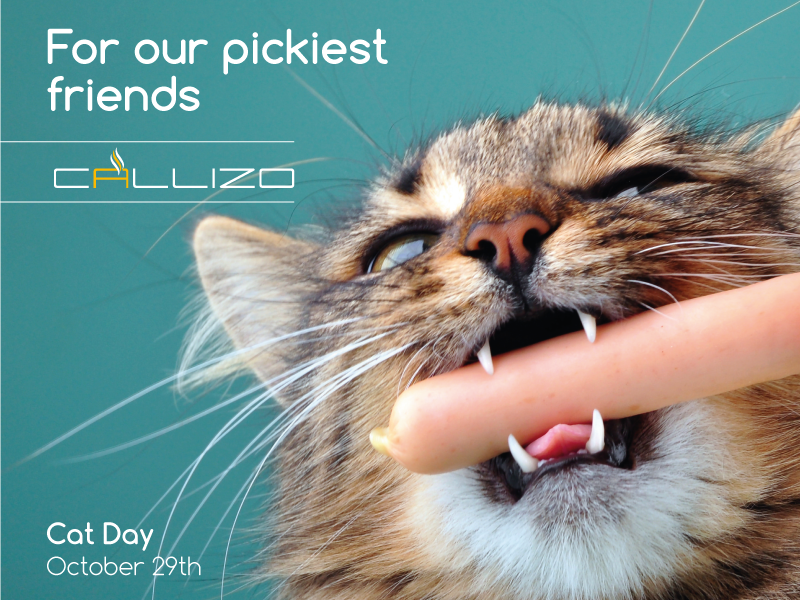 Market Information
Market Information
3+ MIN
29/10/2023
World Cat Day
Cats are considered strictly carnivorous animals, so they have higher protein and essential amino acid requirements. Diets must meet the required nutrients, and also be palatable to encourage and maintain food consumption. A complete and balanced diet is not enough if the intake is not optimal for each animal. Cats have a developed sense of smell that helps them evaluate the nutritional content of food. This helps them choose favorable foods and reject unwanted or potentially harmful ingredients. If it detects an unpleasant aroma, the cat will not eat the food. When compared to other species, cats have fewer taste buds (approximately 470), they have a less developed sense of taste than dogs (1,900) or humans (9,000) for example. Additionally, cats do not perceive sweet flavors since they lack receptors for compounds such as sucrose, fructose or glucose. This gives the aroma of food a great importance, since it is the first filter that cats use to determine if a food is appropriate for consumption and if they will give it a chance and try it out. This strategy allows the cat to use organoleptic information to identify the composition and nature of the food. Cats will first smell the food and if it meets their standards, then they will try it. When formulating cat food, the use of flavoring additives helps achieve these two aspects: improving the aroma and generating flavor. The first has an initial impact and encourages the animal to try the food. After the cat tries it, its taste needs must be satisfied to ensure that it will continue consuming its food. This is where the importance of flavor comes in, since each animal must be fed until its nutritional requirements are met. Flavoring additives can be composed by a mixture of several compounds. Among them essential oils, oleoresins, artificial flavors, protein hydrolysates (liquid or powder), distillates or chemical compounds. These can be used in combination and must be designed according to each project, considering the form of application and objective of each product. Formulation may vary if it is targeted for canned or dry foods, for example. Hydrolyzed palatants are the most used by the industry. These bring proteins from various sources to a hydrolysis process, paying importance to the quality of these protein sources. As a result, a base with a large number of peptides and free amino acids is obtained. By knowing the composition of this base and generating a reaction process at specific and controlled temperature and time, different aromatic compounds are created as a result of Maillard reactions. These directly influence the smell and flavor, being highly palatable to our pets. Regarding this, we cannot ignore the concept of integral palatability, where several factors play part such as: particle size, texture, shape, smell, flavor, and general composition of the food. In addition to its ingredients, these other factors affect palatability as well: moisture, origin of the proteins, composition of amino acids, acidity, quantity and origin of the fats used and avoiding the inclusion of bitter compounds. To please the tastes and demands of cats, Callizo Aromas has developed a line of additives that improve the acceptance and consumption of food, which include: liquid and powdered hydrolyzed palatants, flavor enhancers for canned products, acidifiers and a complete line of flavors specially designed with the aromatic notes that mostly attract each species. For more information, contact us! By: Callizo Aromas
 Animal Origin
Animal Origin
2+ MIN
27/10/2023
Sustainability of Rendering
Instead of wasting half of the meat we farm and buy, Rendering reclaims these unwanted 'leftovers' and transforms them into ingredients for countless products, recycling 99% of this unwanted meat.
By recycling animal leftovers, renderers create valuable ingredients from resources that would otherwise be thrown away, taking up enormous amounts of precious landfill space.
Instead of wasting these animal parts through other disposal methods, renderers recycle the materials into 19 billion pounds of fat, oil and protein products.
Rendering not only creates alternative, sustainable fuels to power trucks, trains, water vessels and other vehicles but also nutritiously feeds cattle, hogs, turkeys, chickens, household pets and other animals.
Renderers play an important role reducing food waste, sustainably recycling valuable agricultural resources and positively contributing to local, state and national and international economies.
Rendering Leads to a Reduced Carbon Footprint
Rendering also protects the environment from the high greenhouse gas emissions of other disposal methods, reduces energy and water consumption, minimizes environmental impacts of animal agriculture and supports communities.
The environmental sustainability of rendering avoids at least 90% of potential greenhouse gas emissions compared with industrial composting and sequesters 5 times the amount of greenhouse gas emissions as it emits.
If all renderable product were sent to the landfill, all available space would be used in 4 years.
Economic Sustainability of Rendering
The rendering industry is financially stable, secure and sustainable with $10 billion in annual economic contribution.
Workers are highly-skilled and well compensated and employee retention rates are high, leading to more stability and greater contributions to local communities.
Simple Fact: Rendering jobs cannot be exported due to the raw and perishable nature of the material our industry reclaims.
Source: North American Renderers Association
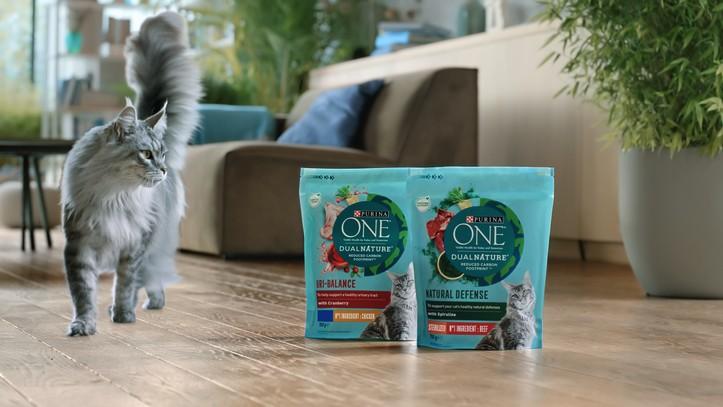 Formulation
Formulation
2+ MIN
26/10/2023
Purina creates carbon-reduced pet food range
The brand has reduced its environmental impact by making changes to its manufacturing, recipes, logistics and packaging, such as by using renewable electricity in the factories where the range is made and selecting ingredients with a lower carbon impact.
Logistically, where the infrastructure exists, pet food products have been transported between countries using multimodal transport – a combination of road and rail systems – instead of purely road.
Purina ONE DualNature features mono-material packaging, which can be recycled in stores in the UK, while the bags have been made with 40% recycled plastic. So far, the range has successfully reduced its carbon footprint by 15.7% compared to a 2019 baseline.
The range contains natural ingredients with health benefits such as spirulina and cranberry and comes in a variety of meat and fish flavours. Adjustments to recipes have been made without compromising the nutritional value, quality and taste of Purina ONE DualNature, the company maintains.
Purina Europe marketing director Fabio Degli Esposti said: 'At Purina, we're committed to producing healthy, nutritious pet food that you can trust. But that's not all. We believe the health of our environment is as important as providing high quality pet food products.
'Purina ONE DualNature is the first Purina product range that has announced a reduction of its carbon footprint, but it's just the beginning. Purina Europe is striving to contribute towards Nestlé's wider ambition of reducing its CO2 emissions by 50% by 2030.
'Our journey goes on and we'll be working to further reduce our greenhouse gas emissions over the coming time, so that pet owners can confidently choose products that contribute positively to both their pets and the environment.' The range is being launched in selected countries across Europe. The RRP in UK grocery stores is quoted as £6.60.
By All Pet Food
 Market Information
Market Information
3+ MIN
25/10/2023
German pet parents opt for cost-saving methods to keep buying quality food
New research from NielsenIQ accessed by GlobalPETS unveils that German pet parents are concerned by increased inflation, prices and cost of living. More than half (64%) of 1,500 surveyed pet owners admit that they are very concerned about the situation, with half of them taking steps to get a better handling of their budget dedicated to pet supplies. Pet parents aged 18 to 24-year-olds, single households and households with children are the most affected by the situation, according to Nielsen IQ survey from July 2023. Measures in time of crisis Over a quarter (29%) of pet parents in Germany felt compelled to occasionally purchase cheaper pet food in the last 3 months, and a fifth (21%) switched to a cheaper pet retailer. Nearly 2 out of 10 pet parents compared the prices of different pet food brands to find cheaper alternatives but haven't bought them at the end. Those that will compare prices in the next 3 months increase to 25%, mostly young pet owners. Yet, only 6% had switched to cheaper pet foods, indicating a strong preference to maintain the quality of food they feed their pets. Offline dominates Two-thirds of shoppers frequented specialist pet retailers in the last 3 months, with nearly half choosing grocery stores and drugstores. Approximately a quarter of shoppers opted for online platforms, mainly Amazon, and 9% bought its pet supplies in do-it-yourself (DIY) stores and garden centers. Among those who prefer offline shopping, specialist stores are the preferred retail channel for most German pet owners (63%). General food retailers (58%) follow. If we look to online purchases in the last 3 months, specialist retailers represented 73% of all sales in that channel. According to Nielsen IQ, pet specialist retailers have become Germany's leading omnichannel channel. Purchasing preferences Large product availability, variety and being well-stocked are the 3 aspects that impact a pet owner's perception when choosing a retailer. When it comes to product claims, pet parents value that pet food is sugar free (42% for dogs owners vs. 40% for cats owners), followed by 'grain-free' (36% vs. 31%) and 'organic' (25% vs. 19%). A quarter of German dog owners and 18% of cat owners look for 'sensitive' food, according to the data. Harald Müller, Senior Consultant and Project Manager at NIQ, believes that those who primarily shopped online in the last 3 months paid even more attention to these product characteristics when making a purchase. 'Specific search criteria or product filters could play a role here,' he says. Purchasing power On average, German dog owners spend €74 ($79.2) per month on food, while cat owners spend €61 ($65.3). Over a fifth of dog owners spend upwards of €100 ($107.1), but only 10% of cat owners do the same. Most cat owners spend between €25 and €50 ($26.7–$53.5) every month. In the past year, purchasing trends for wet food, dry food and snacks have been relatively the same, with 80% of those surveyed buying the same amount for their pets. According to NielsenIQ, the BARF (biologically appropriate raw food) section has seen the most growth (25%) across German retailers, even though only 15% of dog owners buy raw food. by David Palacios Rubio & Muskaan Gupta from GlobalPETS.
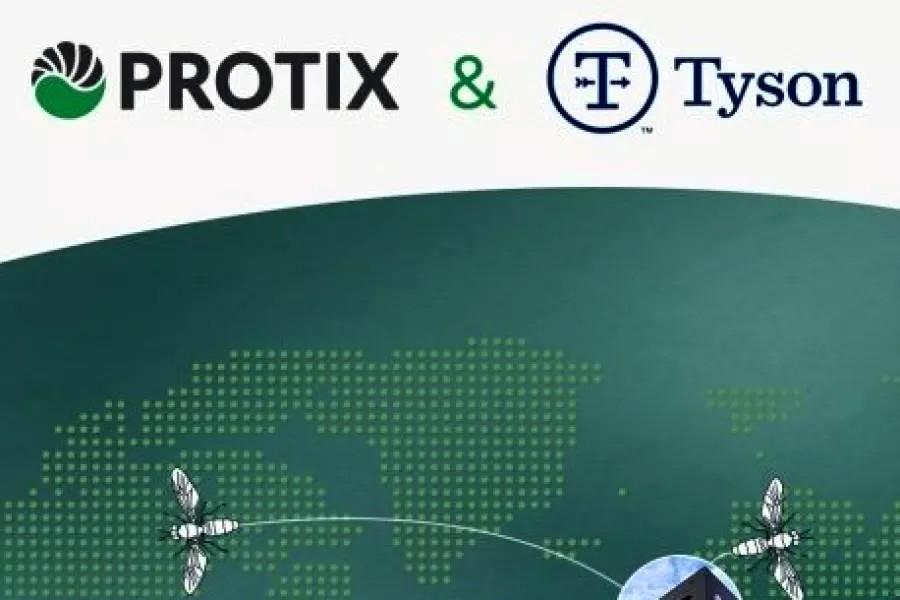 Animal Origin
Animal Origin
4+ MIN
23/10/2023
Tyson Foods Announces Partnership with Protix for More Sustainable Protein Production
Oct. 17, 2023 – Tyson Foods, Inc. (NYSE: TSN), one of the world's largest food companies, has reached an agreement for a two-fold investment with Protix, the leading global insect ingredients company. The strategic investment will support the growth of the emerging insect ingredient industry and expand the use of insect ingredient solutions to create more efficient sustainable proteins and lipids for use in the global food system. The agreement combines Tyson Foods' global scale, experience and network with Protix's technology and market leadership to meet current market demand and scale production of insect ingredients.
Through a direct equity investment, Tyson Foods will acquire a minority stake in Protix to help fund its global expansion. In addition, Tyson Foods and Protix have entered a joint venture for the operation and construction of an insect ingredient facility in the continental United States. Upon completion, it will be the first at-scale facility of its kind to upcycle food manufacturing byproducts into high-quality insect proteins and lipids which will primarily be used in the pet food, aquaculture, and livestock industries.
'Our partnership with Protix represents the latest strategic investment by Tyson Foods in groundbreaking solutions that drive added value to Tyson Foods' business,' said John R. Tyson, chief financial officer of Tyson Foods. 'The insect lifecycle provides the opportunity for full circularity within our value chain, strengthening our commitment to building a more sustainable food system for the future.'
Kees Aarts, CEO of Protix, says: 'We are very excited to announce the next step in our international growth strategy. Tyson Foods' and Protix's strategic partnership advances our joint work towards creating high-quality, more sustainable protein using innovative technology and solutions. Moreover, we can immediately use their existing byproducts as feedstock for our insects. This agreement is a major milestone for Protix and significantly accelerates our ambition to grow through international partnerships.'
The to-be-built facility in the U.S. will house an enclosed system to support all aspects of insect protein production including the breeding, incubating, and hatching of insect larvae. In addition to ingredients for the aquaculture and pet food industries, processed larvae may also be used as ingredients within livestock and plant feed.
Protix is a fully integrated insect ingredients company, producing and processing 14,000 metric tons LLE annually in its Netherlands facility which has been in operation since 2019. It serves major global companies in the pet food, aquaculture feed, livestock feed and organic fertilizer industries as the demand for insect ingredients continues to grow.
Tyson Foods continues to develop solutions to create a food system that is more sustainable and equitable for future generations. To learn more about Tyson Foods' sustainability initiatives, visit tysonfoods.com/sustainability.
Insect Ingredient Facility
The planned insect ingredient facility will house an enclosed system to support all aspects of insect protein production, including the breeding, incubating and hatching of insect larvae.
In addition to ingredients for the aquaculture and pet food industries, processed larvae will find use as ingredients within the livestock and plant feed segments.
'The insect life cycle provides the opportunity for full circularity within our value chain, strengthening our commitment to building a more sustainable food system for the future.'
About Tyson Foods, Inc.
Tyson Foods, Inc. (NYSE: TSN) is one of the world's largest food companies and a recognized leader in protein. Founded in 1935 by John W. Tyson and grown under four generations of family leadership, the Company has a broad portfolio of products and brands like Tyson®, Jimmy Dean®, Hillshire Farm®, Ball Park®, Wright®, Aidells®, ibp® and State Fair®. Tyson Foods innovates continually to make protein more sustainable and affordable to meet customers' needs worldwide and raise the world's expectations for how much good food can do. Headquartered in Springdale, Arkansas, the Company had approximately 142,000 team members on October 1, 2022. Through its Core Values, Tyson Foods strives to operate with integrity, create value for its shareholders, customers, communities and team members and serve as a steward of the animals, land and environment entrusted to it. Visit www.tysonfoods.com.
About Protix
Protix is the leading company in insect-based ingredients for healthy and sustainable pet food, aqua culture and livestock feed and organic fertilizer. The company is on a mission to create low-footprint ingredients that solve major issues in the current food system. Protix contributes to a circular food chain by using waste from the food industry as feed for the black soldier fly (BSF). In turn, the insects are processed into valuable nutrients such as proteins and lipids. Protix's customers use these proteins and lipids as high-quality ingredients for feed and food. Moreover, residual streams from the insects are used as organic fertilizer. This way, insects close the loop and bring the food system back in balance with nature.
Based in the Netherlands, Protix operates the first-in-the-world industrial insect facility, opened in 2019. With breeding, rearing and processing under one roof, the company has complete control of the production chain and offers reliable, high-quality supply. As the frontrunner and industry leader, Protix has laid the basis for a broad range of applications in feed and food. The company is now expanding internationally to deliver its solutions on a much broader scale. Protix believes in the power of partnerships, and actively seeks collaboration with forward-thinking players to unleash the potential of insect ingredients for the world. www.protix.eu.
Source: Protix
by All Pet Food
 Packaging
Packaging
2+ MIN
20/10/2023
STATEC BINDER and NUPAC successfully conclude project together
Their goal was to increase bag filling capacity while reducing manual handling. For this, they turned to NUPAC in Australia, known as reliable suppliers of processing and packaging machinery and STATEC BINDER partners, who share a commitment to finding high-quality solutions for their customers. The Challenge: Enhancing Efficiency Massel Australia recognized the need to improve their bulk bagging process. The objective was straightforward: streamline operations, reduce labor requirements and elevate efficiency. They needed a partner who could not only provide cutting-edge machinery but also understand the unique constraints and demands of their production facility. Choosing NUPAC and STATEC BINDER: A partnership founded on individuality Massel Australia's journey toward a solution led them to NUPAC. What set NUPAC apart from the competition was more than just state-of-the-art equipment. Michael Caine, General Manager of Massel Australia, commented that they proceeded with NUPAC because "they displayed a genuine interest in coming up with a solution for us, listened to our needs and constraints, and were able to come up with a creative and efficient solution." The Solution for the customer: STATEC BINDER´s Acropac-T Machine NUPAC recommended the STATEC BINDER Acropac-T machine with gross weighing system and stainless steel execution. ACROPAC-T is a fully automatic open-mouth bagging machine which was perfectly tailored to Massel's requirements. This state-of-the-art equipment not only increased bag-filling capacity but also significantly reduced the need for manual operator input. One of the critical aspects was its ability to deliver substantial cost savings per bag filled. This cost-effectiveness made the investment in the new equipment an attractive proposition for Massel Australia. Overcoming Space Constraints Massel Australia faced a particularly challenging constraint—limited space, especially in terms of height. NUPAC worked closely with STATEC BINDER to overcome this challenge and find a solution that was compatible with the space available. This commitment to meeting every challenge head-on impressed Massel Australia and reinforced their trust in NUPAC as well as in the quality of STATEC BINDER machines. Massel Australia's encounter with NUPAC and STATEC BINDER was notably favorable. Michael Caine, in particular, emphasized that the entire process was an "overall excellent xperience." He commended their professional handling of all queries and questions, creating a relationship that streamlined communication, especially during the planning and execution phases. When asked if they would recommend NUPAC and STATEC BINDER to others, Massel Australia responded with a resounding "Yes." Their recommendation is rooted in the positive purchasing experience and their trust in the post-sales support. They are confident that the ongoing support will maintain the same high standards of professionalism, positivity, and effectiveness as their initial interaction. In conclusion, this partnership has not only enhanced Massel's bag-filling process, thereby improving operational efficiency, but has also instilled confidence in NUPAC and STATEC BINDER's ability to provide unwavering support in the face of any challenge. By Statetc Binder Source: All Pet Food
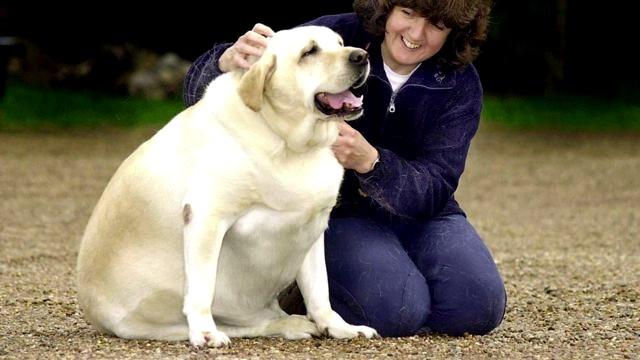 Dogs
Dogs
4+ MIN
19/10/2023
Survey Reveals Impact of Excess Weight for Dogs – and Their Owners
ST. LOUIS — A new survey from Purina Pro Plan Veterinary Diets found that excess physical weight in dogs carries an emotional weight for owners, and that many owners view their dogs as thinner than they really are.
Results showed that approximately one in five dog-owning households consider one or more of their dogs to be overweight, according to a press release. However, according to the Association for Pet Obesity Prevention, the number of overweight dogs in the U.S. has reached a record high, with 59% of evaluated dogs either overweight (37%) or having obesity (22%).
The Pro Plan Veterinary Diets survey was released on Oct. 11 – National Pet Obesity Awareness Day – and included more than 600 U.S. dog owners who identified their dog as overweight. It highlighted the physical and emotional factors contributing to excess weight and how these hinder dog owners from helping their pets.
'Dogs do not always gain excess weight due to a lack of care from their owners,' said APOP President Ernie Ward, DVM. 'If anything, an overweight dog may be a sign that the owner cares too much about their dog's happiness. But while it's often said that 'food is love,' feeding a pet too much could lead to an overall reduced quality of life.'
More from the release:
The Emotional Impact of Excess Weight
The new survey revealed that excess weight gain in pets can be related to the emotions owners experience around feeding and treating:
-75% of surveyed owners agreed they feel guilty when their dogs appear hungry.
-67% agreed food is a primary source of their dog's happiness.
-67% agreed they bond with their dog by feeding him/her treats and don't want to lose that bond.
-54% agreed they feed their dog more food, table scraps or treats when their pet begs for them.
Despite their fears about losing the bond with their dogs, 88% of surveyed owners whose dogs are overweight agreed their pets' body condition does concern them and 92% agreed that weight loss would be beneficial. These beliefs may be fueled by weight-related behavior changes in their pet that can impact the owner:
-92 percent of surveyed owners agree they are sad when their dog can't participate in activities they previously enjoyed when their weight was ideal.
-45% indicate their dog has less energy for playtime, 44% say their dog tires easily after minimal activity and 27% say their dog is less engaged or playful with their families.
'The results show that many owners of overweight dogs feel conflicted about what quality of life means for their pets,' said Jason Gagné, DVM, DACVIM (Nutrition), Director of Veterinary Communications for Pro Plan Veterinary Diets. 'While owners recognize that excess weight is keeping their dogs from participating in activities they once enjoyed, they also worry their dogs will be unhappy if feeding changes are made.'
What Can Owners Do?
Many surveyed owners have tried to help using DIY slimming strategies but were met with limited success. According to the survey, the most common weight-loss approaches tried by owners are reducing portions of existing food, cutting back on treats and increasing exercise, yet 68% of owners who tried these strategies stated their dogs lost only a little weight or no weight at all.
'Understanding the significance of this issue is the first step towards a healthy future for our pets,' said Gagné. 'The second is working closely with your veterinarian to create a weight loss plan that will work for you AND your pet – including the right nutrition, which can make a big difference. Pro Plan and Pro Plan Veterinary Diets offer a range of formulas, like OM Metabolic Response + Joint Mobility, specifically designed to help pets lose body fat while maintaining lean muscle mass.'
It's also important to think about weight before it becomes a problem. In a 14-year study published in 2002, Purina scientists were the first to show the importance of keeping dogs at an ideal body condition throughout their lives3. Researchers monitored the health of 48 Labrador Retrievers throughout their lives during which half the dogs were fed 25% less (restricted-fed) than their full-fed (control) siblings. The results showed that feeding dogs to an ideal body condition over a lifetime can significantly extend a dog's healthy years – by an average of 1.8 years for the dogs in the study.
If you have concerns about your pet's weight, talk to your veterinarian. To learn more about weight management support and Pro Plan Veterinary Diets, visit proplanvetdirect.com.
About the Association for Pet Obesity Prevention (APOP)
The Association for Pet Obesity Prevention is a 501(c)(3) nonprofit organization founded in 2005 with the primary mission of preventing and treating pet obesity. APOP conducts research to substantiate pet obesity prevalence levels in the United States and offers resources and tools to veterinarians and pet parents to recognize, prevent, and treat pet obesity.
By Neslé Purina
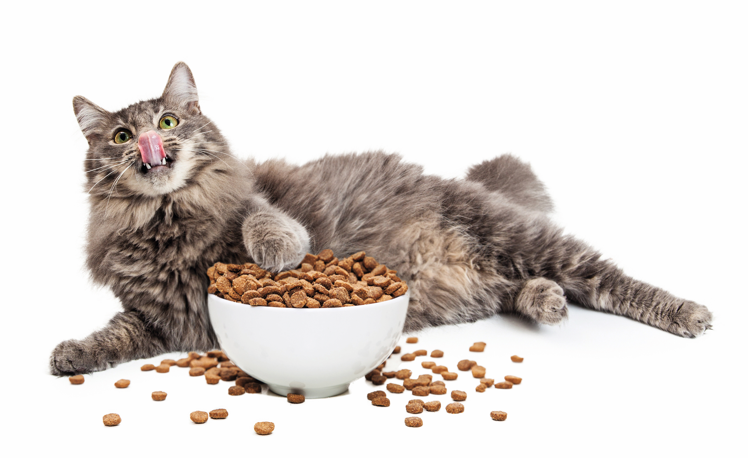 Palatants
Palatants
5+ MIN
18/10/2023
Por María Candelaria Carbajo
Palatability: the importance of producing palatable food
In a study done by professionals from Australian and New Zealander universities, research analysis and compilation were carried out to gather information about the importance of palatability and its drivers in certain pet foods. The pet food industry and growth does not stop The pet food industry is an important sector of the rapidly growing pet care market. However, while the number of new and innovative products keeps growing, research and development to assess their performance follow traditional palatability methodology. These focus on analyzing the amount of food consumed by using one and two-bowl tests. Nowadays, we know that, although foods are primarily formulated to provide complete and balanced nutrition, palatability is a crucial factor in determining the success or failure of a product in the marketplace and its likelihood of repurchase. Nutritional requirements of dogs and cats Cats and dogs are members of the carnivore order. While the name implies that both are specialized carnivores, each species originated from different branches: the domestic cat is part of the Felidae family, whereas the domestic dog is part of the Canidae family. Nutritional requirements, feeding behavior, and food selection choices vary considerably between the two species. Compared to their carnivorous wolf ancestors, today's domestic dogs can consume food of both animal and non-animal origin and are, therefore, classified as facultative carnivores. For their part, cats are one of the most recently domesticated mammal species. They are solitary hunters who often hunt prey much smaller than their body mass, requiring them to do it several times a day to meet their needs. They are classified as intermittent eaters who consume multiple small meals over a 24-hour period, and are generally much more picky, compared to dogs: they can detect small differences in the food composition offered to them. Unlike dogs, they are obligate carnivores in their methods of ingesting, digesting, and metabolizing meat-based diets, as without animal protein, cats can suffer from severe nutritional deficiencies. How do they behave? Both cats and dogs tend to display neophilic behavior, defined as a tendency for new and unknown food, as opposed to neophobia, the avoidance of it. In some cases, already somewhat extreme, cats can show metaphilia, the demand to change a portion of food once it becomes familiar to their palates. Preferences and palatability With the increasing number of pet foods available on the market, palatability has become the main criterion used to measure product performance. These foods' physical and chemical properties, linked to the promotion or suppression of eating behavior during the preabsorption period, are those that define, to a large extent, whether or not their owners will buy one food again or not, since they have a direct relationship with the perception of pleasure or taste during consumption. Palatability tests The consumption test (how much food is consumed over time) is the most widely used technique to assess food palatability. It can be applied by seeking to analyze the palatability of a single product or by comparing more than one with another to determine group preferences. One-bowl test In this test, a single product is presented to a defined number of animals and repeated over several days to eliminate environmental influences. It is useful to reflect more accurately the different options provided at homes. Currently, the problem with this test is that it does not show a real preference for any specific food and, furthermore, it does not provide enough information to be able to certify an improvement in a product. Two-bowl test The two-bowl test is the other traditional method of palatability testing for research and involves presenting 2 foods simultaneously to an animal for a defined period, allowing the animal to choose and show its preference. Behavior as a measure of palatability Pets can't speak about their preferences and tastes, so studies should focus on assessing their behavioral response to various foods to obtain an additional objective measure of palatability. Regarding this, in the case of cats, for example, in a study by Van den Bos, it was possible to identify certain physical responses that seemed to be related to liking or aversion to different foods, also known as taste reactivity tests. The taste for food was distinguished by licking and sniffing their feeder, licking their lips, and grooming their face. Food refusal was differentiated by licking and sniffing food and nose licking. Another defining aspect is the time cats spend sniffing food. Biological aspects In addition to differences in feeding behavior and nutrient requirements, the main factors influencing cat and dog food preferences also vary. In dogs, preference for odor has been identified as the likely palatability driver in a study (Hall, 2017) in which dogs were presented with two bowls of 1 out of 4 chicken-flavored foods and, in 89 % of the tests, consumed more of the food they had initially selected. In another study carried out by Roberts in 2018, it was concluded that dogs could choose their preferred diet before trying it, and it is possible that the smell was a key factor in making this picking. In the case of cats, they use both smell and taste to detect and select food. Although not as highly developed as dogs, they use their smell sense to recognize both new and trusted scents. Food preference is often strongly influenced by their mothers' food choices and exposure to food during pregnancy via amniotic fluid, even in the first few years of life. This limited exposure to different foods in their first years can result in a preference for that taste, known as the primacy effect. However, it may not be seen in practice, as some cats show neophilia to various options. Additionally, when cats face two familiar and abundant types of food, they will eat a mix of both to obtain a wide variety of nutrients and maximize long-term nutritional benefits. Regarding food selection, several studies have proven that the most influential aspect of the decision is taste, smell, and color. The future can't wait! Pet food palatability is a key aspect for both manufacturers and pet owners. Currently, traditional palatability testing methods are used to assess the acceptance and preference of balanced pet foods and snacks. However, there are gaps in our knowledge in this area, and more research is needed to determine the fundamental factors responsible for choosing one food over another. Modern techniques such as metabolomics can unlock this knowledge, but, we'll say it again: investment is needed for its successful development. Taking a collective approach that uses both traditional palatability testing methods and modern testing can be the fair and balanced way to determine the optimal level of ingredient inclusion, maximize palatability, recognize the nutrients responsible for driving preference, and more. Source: All Pet Food Magazine
 Market Information
Market Information
1+ MIN
13/10/2023
Trending in North America: natural and nutritious pet food
Inflation was a key driver of growth but trends including premiumisation and usage of treats and toppers will prevail in the longer term, though. Mintel forecasts continued moderate growth as inflation eases in coming years, with a rise of 24% between 2022 and 2027 to $44.4 billion. In this new article on our blog you will be able to learn how the humanization trend supports trends in health and nutrition, as well as sustainability, within the pet food industry in North America. You are invited to read more! Source: Symrise Pet Food
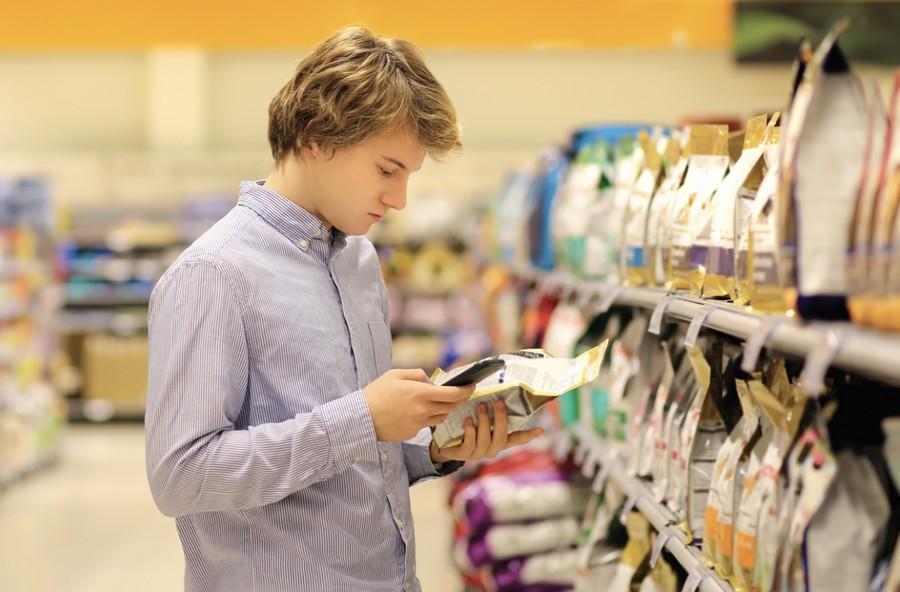 Labels
Labels
3+ MIN
12/10/2023
Europe definitively approves the labeling of organic pet food
Under the new regulation, manufacturers can label pet food with the EU organic production logo if 95% of its agricultural ingredients are organic, aligning with organic food for humans and considering the EU's high standards for organic products. The European Parliament and the Council of the European Union have considered the 'growing consumer demand for organic products' as an opportunity for further expansion of the pet food sector, making it easier for consumers to recognize organic ingredients in their pet food purchases. Further, to spread awareness about compliance, the Council has made the EU organic production logo mandatory for pre-packed organic pet food. 'With these new and updated rules, it will be easier for pet owners to buy organic food for their pets. At the same time, the regulation will make it easier for producers to enter the organic pet food market and improve certainty for EU consumers,' says Luis Planas Puchades, acting minister of agriculture, fisheries and food for Spain. 'Final consumers should be appropriately informed about the composition of pet food containing both organic and non-organic agricultural ingredients, thus enabling consumer confidence and fair competition between operators in the pet food sector,' says the regulation. The Council adopted the law on October 9 and it will enter into force three days after its publication in the Official Journal. Boosting organic production and stability The EU regulation on organic production was applied on January 1, 2022, and stipulates that pet food can only be labeled as organic if all its agricultural ingredients are organic. The new regulation amends this requirement to 95% (in terms of weight). The new law will make it more practical for pet food producers to cater to organic labeling requirements and enter the market. 'This is in line with the farm-to-fork strategy goal of boosting organic production so it can reach 25% of the EU's agricultural land use by 2030,' notes the EU Council. The new law also dictates that producers refer to organic production in the sales description and the list of ingredients for consumer information and transparency to stimulate the use of organic ingredients in pet foods. To maintain harmony among producers, the law allows the sale of organic pet food labeled per national rules or in line with private standards between January 1, 2022, and the date of entry into force of the new regulation can still be sold 'until stocks are exhausted.' Moreover, pet food producers have six months before they are required to place the EU organic logo on their products. Events preceding the law's sanction Previously, organic production of all the ingredients was not a criterion for pet foods to be labeled as organic since the requirements for organic pet food were generally set at a national level. But, a change came into effect when regulation 2018/848 was applied in January 2022, which demanded that 'processed animal feed can be labeled as organic only if 100% of its agricultural ingredients and at least 95% of its dry ingredients are organic.' However, producers struggled with the limited availability of the organic variants of some ingredients, including those that improved the taste of pet food. It became impossible for most organic pet food formulators to adhere to the rules. Pet food taste can be improved by using palatants that blend umami richness and targeted taste enhancements. Symrise recently opened such a production facility in Brazil. On November 28, 2022, the European Commission adopted its proposal for a regulation on labeling organic pet food, which provides clarity to producers and consumers by deciding on specific labeling for pet food. The Council then amended the proposal by adding 'transitional periods' to allow producers to adapt to the new rules. All Pet Food
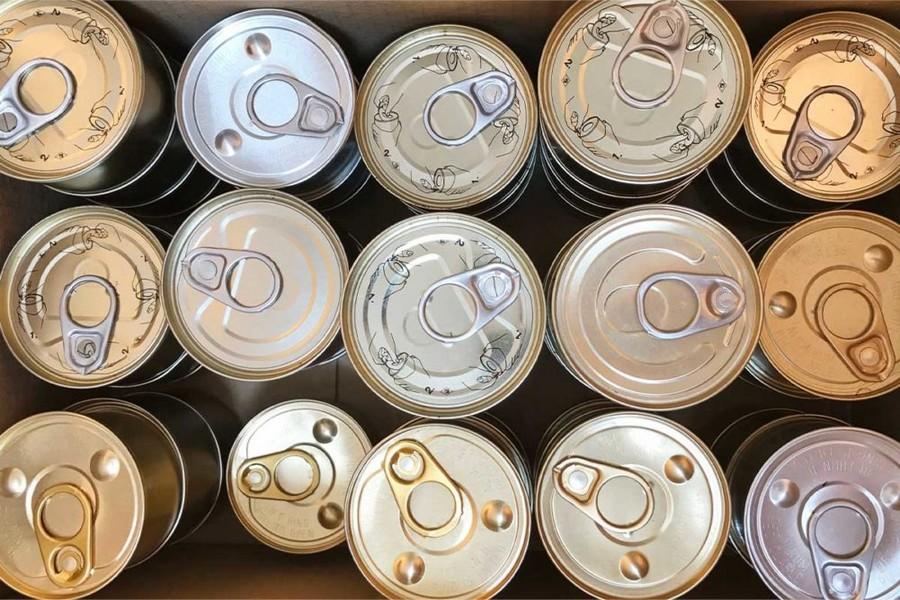 Packaging
Packaging
2+ MIN
11/10/2023
Purina calls on consumers to recycle pet food cans
The #PurinaRecyclesChallenge encourages pet owners to take aim at the recycling bin — rather than the trash can — when disposing of their used pet food cans. According to the Can Manufacturers Institute, the pet food industry utilizes roughly 7 million metal food cans annually. Approximately 25% of these are steel and typically used for dog food, and 75% are aluminum and normally used for cat food. While these cans are infinitely recyclable, there is ample room for improvement in their recycling rates, including among pet owners. An estimated 32% of American consumers recycle, according to the Environmental Protection Agency's (EPA) 2019 American Community Survey. The US Energy Information Administration claims the use of recycled aluminum cans to manufacture new cans requires 95% less energy than creating new cans from raw materials. 'We launched the #PurinaRecyclesChallenge to show just how easy it is to make an impact, and to help break down some of the barriers that keep people from recycling their pet food cans,' said Gopi Sandhu, vice president of environmental sustainability at Purina. 'Aluminum and steel are infinitely recyclable, and given the billions of cans produced in the United States each year, a seemingly small act of recycling can make a big difference.' The challenge invites pet owners to film a 'trick shot' of them banking a pet food can into the recycling bin and share on Instagram and/or TikTok with the hashtag #PurinaRecyclesChallenge. The company will donate $10 for every original post and $1 for every like, share or comment on those posts to The Recycling Partnership to support recycling education and infrastructure across the United States. The campaign will run through Dec. 15. Aside from this can recycling initiative, Purina has also committed to improving packaging sustainability across its entire portfolio. According to the company, almost 90% of its plastic packages used for pet food are designed to be recycled, a figure it hopes to increase to 95% by 2025. By Jordan Tyler - Pet Food Processing
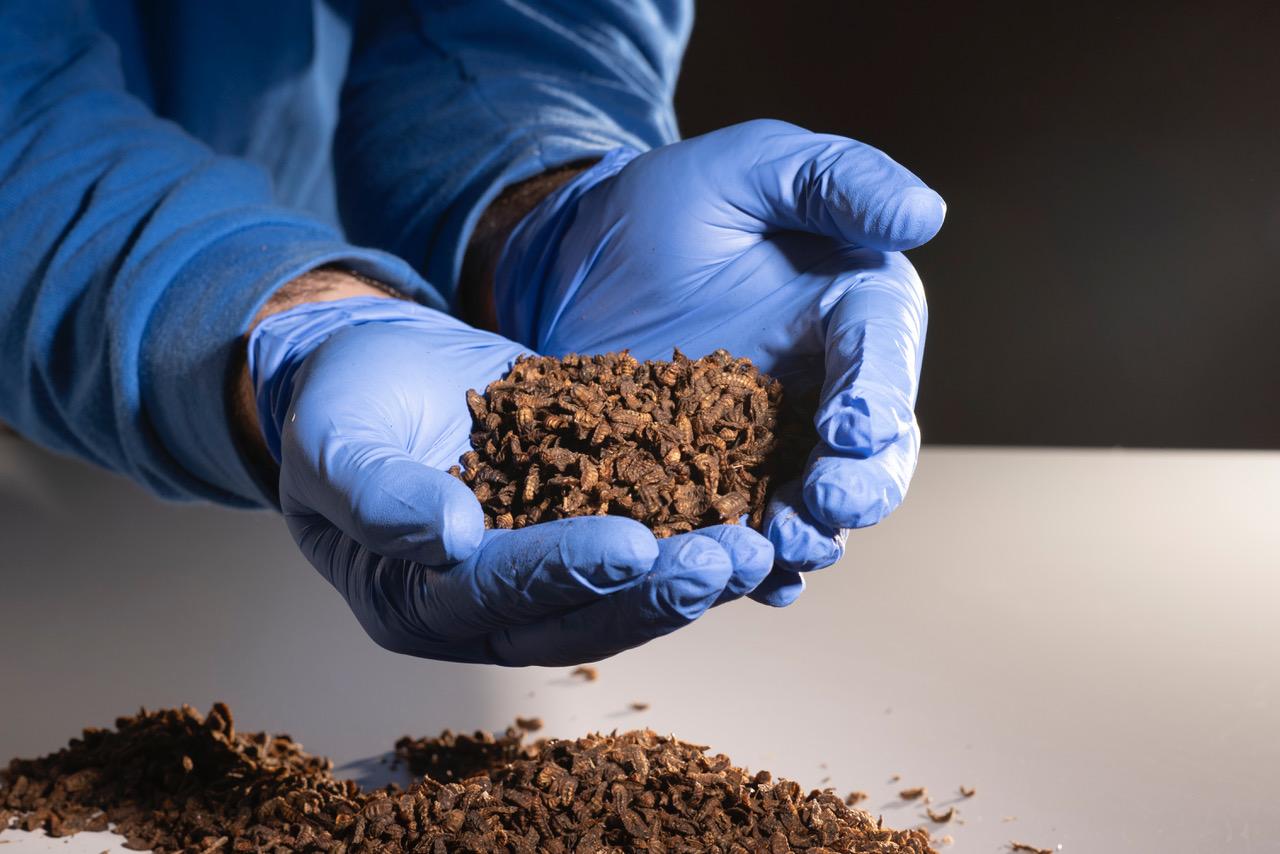 Market Information
Market Information
3+ MIN
10/10/2023
Bioflytech makes progress in the construction of its second plant in Spain
Located in the northwest of the country, the objective for the first phase is for the new plant to produce 12,000 tonnes of fresh black soldier fly larvae per year. It includes a rendering facility, of its own design and unique in the market, which allows it to manufacture flours with protein and fat percentages tailored to customers' requirements. The company has another plant in Fuente Alamo (Murcia), where it produces 180 kg. of black soldier fly eggs per month Palas de Rei, Spain, October 2nd 2023.- Work on the plant Bioflytech is building in Palas de Rei, in the Spanish autonomous region of Galicia, is progressing well. The rendering and drying plants are being set up, and in the coming weeks the first of the six fattening halls will start operations, each of which will produce 2,000 tonnes of fresh black soldier fly larvae per year, until reaching the maximum production capacity of this first phase, of 12,000 tonnes per year, during 1Q2024. In the coming years, further major investments are planned in this plant in order to reach 100,000 tonnes per year of black soldier fly larvae production. This new, second Bioflytech plant - the other is located in Fuente Álamo, in the Spanish region of Murcia - is equipped with a gas rendering installation designed by the company and unique in the market, a disruptive technology that will make it possible to manufacture tailor-made flours with specific percentages of protein and fats according to the customer's demands, and which is set to revolutionise the insect protein flour production sector. The Palas de Rei plant will also have a second conventional rendering line, which is currently in the testing phase and is expected to start production this November. Bioflytech was founded in 2012 as a biotechnology company linked to the University of Alicante. Six years later, the company Moira Capital acquired the majority of its capital, and at the end of 2019 moved its operations to Fuente Álamo. Bioflytech obtains mainly four products from the black soldier fly: dried larva, which is obtained after almost complete drying of the fresh larva and has highly digestible protein and all the necessary components for the diet of poultry, fish and other animals; high-protein meals; fats, which are obtained from the larvae and without using chemical agents or solvents; and compost, obtained as a result of the biodigestion of the plant material produced during the fattening process. Bioflytech's dried larvae is a product specially designed as a feed diet for laying hens and broiler chickens, while the protein meals are intended for the petfood, aquaculture and poultry industries, and also to a lesser extent for animal feed for the fur industry. Fats are mainly used in animal feed, but also in the pharmaceutical and cosmetics industry. Compost is used as a fertiliser. One of the world's leading players Bioflytech's first and so far only plant in Fuente Alamo currently produces 4,000 tonnes of fresh larvae per year. One of the largest black soldier fly hatcheries in the world is located here, with a production of 180 kilos of black soldier fly eggs per month. Bioflytech's strategic plan includes an investment of 2.8 million euros this year in various improvements in this plant, with the aim, among others, of increasing the monthly egg production to 350 kg. Now, with the start-up of the second Spanish plant - which will operate through its subsidiary Alternatives Fats and Proteins of Galicia - Bioflytech will consolidate its position as one of the world's leading producers of insect-derived products for the animal feed industry. Source: Byoflytech
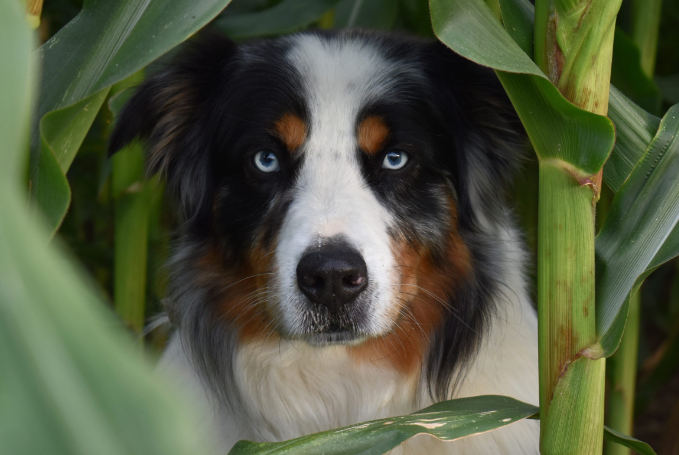 Pulses and Oilseeds
Pulses and Oilseeds
4+ MIN
05/10/2023
Stalk About Nutritious: It’s Corn!
Corn has an unearned reputation as being something that should be avoided for pets. Some pet foods specifically advertise that they have 'no corn' as if this is a badge of honor and many non-veterinary sources suggest that corn isn't digestible and 'goes straight through' a dog or cat or is a 'cheap filler'. Let's unpack some of these myths and set the record straight. Can dogs and cats digest corn? While whole sweet corn kernels can make it intact through the intestines of both dogs and cats (and humans!) and be visible in the feces, especially if not thoroughly chewed, this doesn't mean that corn isn't a safe and nutritious food. Like all grains, the digestibility of corn is greatly increased by grinding and cooking – corn meal or ground corn are common pet food ingredients that have been shown to be highly digestible (the starch component is 90-99% digestible in studies). One type of corn that should never be fed to dogs is corn that is still on the cob. Dogs fed corn on the cob, or who access cobs from the compost or trash, often swallow large portions of the cob which frequently cause gastrointestinal obstruction and require surgery to resolve. Does corn cause allergies in dogs or cats? While grains and especially corn are often thought to be common allergens by pet owners, the scientific data does not support this perception. Overall, food allergies are uncommon in pets and the vast majority of pets with food allergies are allergic to animal proteins, not to plant proteins or grains. Corn is rarely confirmed to be the cause of allergies in dogs or cats; in most situations where a pet's family thinks that corn is the culprit, it turns out to be a different ingredient, typically an animal protein (or, more commonly, unrelated to food allergy). Does corn cause inflammation? Corn is an excellent source of the essential fatty acid, linoleic acid. Linoleic acid is an omega-6 fatty acid and it is required to be provided by the diet in dogs, cats, and humans. However, it should be balanced with other types of fats like omega-3s – if a diet has high amounts of omega-6s with little or no omega-3s, that can encourage the production of more inflammatory compounds. Experienced pet food formulators know what combinations of ingredients to use to result in a diet with adequate amounts of essential fatty acids and a healthy omega-6 to omega-3 ratio. The higher omega-6s from corn may be offset by fish or fish oil, algal oil, flaxseed or flaxseed oil, or even chia seeds. So, while corn as the only source of fatty acids in a pet food isn't ideal, most foods will have a number of other ingredients providing other types of fat to balance it all out. Do dogs and cats get any nutrients from corn? Corn can be a good source of energy from both starch (carbohydrate) and from fat (as mentioned above). Whole ground corn also contains some corn bran, which is an insoluble fiber source which can contribute to good fecal quality. Corn is also a good source of several B vitamins, magnesium, and potassium. It's also an excellent source of carotenoids – compounds that are made by plants and suspected to have substantial health benefits – like lutein, zeaxanthin, and beta-carotene (a vitamin A precursor). We don't know how much of these compounds pets (or people) should get from their diet optimally, but they are thought to contribute to why increased consumption of fruits and vegetables is associated with improved health in most studies in people as well as some in dogs. Does corn contain gluten? While the protein component of corn is called 'gluten', it is quite different from the protein found in wheat, rye, and related grains that is associated with gluten-intolerance. Gluten intolerance is pretty rare in pets and has been confirmed only in a few families of specific dog breeds. But, even if a pet came from a breed with known gluten-related issues (such as a border terrier or Irish setter), there should be no reason why the pet won't tolerate corn or corn gluten. Is GMO corn harmful for pets? The majority of corn that is used for human and animal feeding in the US is genetically-modified (GMO) to be resistant to common herbicides. While discussions of the 'evils' of GMO foods are easy to find, actual data to support any health risks to pets or people who eat GMO corn are scarce. Genetically-modified organisms require extensive safety testing prior to FDA approval. GMO corn strains have been available for more than two decades, yet no adverse health effects have been proven. Based on current data, there are no reasons to avoid GMO corn in pet diets. The bottom line is that corn is a safe and healthy ingredient in pet food. Avoid giving your dog access to corn on the cob or empty cobs, but otherwise, don't be concerned to see corn meal, corn gluten, or ground whole corn in your pet food ingredient list. It's also okay to give your dog unflavored popcorn, cooked fresh corn that you've cut off the cob, or cooked frozen corn kernels as a treat – just don't freak out if you see some of the kernels in the feces when you're cleaning the yard! Source: Clinical Nutrition Service
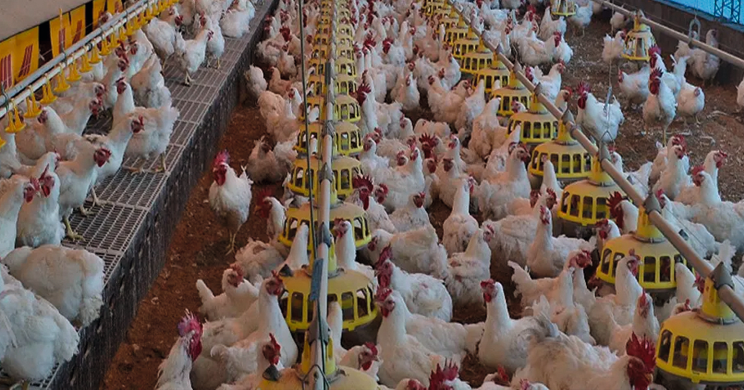 Ingredients
Ingredients
8+ MIN
04/10/2023
Poultry by-products from refrigerators as potential ingredients for pet nutrition
In 2022, Brazil slaughtered 6.1 billion birds, which corresponds approximately to a volume of 12.89 million tons of carcasses produced in inspected establishments (IBGE, 2023). Of these, 4.7 million tons of inedible fresh by-products are transformed into approximately 693.3 MT of poultry offal meal (HVA), 506.1 Mton. of poultry fat, 593.6 MT of feather meal and 118.2 thousand tons of blood meal, a process known as rendering (ABRA, 2021). To transform these by-products into flour, these products are sent to specific processes. In the case of viscera, it must be processed the same day, or in a maximum of 24 hours, as regulated by the Normative Instruction 34/2008 of the Ministry of Agriculture. Thus, all the visceral content, not intended for human consumption, is transported from the slaughterhouse to the "fat plant" (the name given to the establishment responsible for recycling the material), also known as the "rendering plant." The offal rendering process undergoes heat treatment in digesters, which cook the material until much of the water present in the fresh offal evaporates, reaching the frying stage. The total processing time is approximately 60 to 90 minutes, with greater variations, depending on the characteristics of the material processed. After this cooking time, the dough is unloaded in a place to extract part of the oil from the dough by gravity, known as a percolator. After, the dough is pressed to remove excess oil, then milled, and the process is completed, giving instead of poultry offal meal. Figure 1: Production flow diagram of a "rendering plant." In general, poultry offal meal is an excellent source of essential nutrients for non-ruminant animals, with 60 to 70% protein, considered a good quality protein because it has a good amino acid profile and digestibility, it is rich in minerals (calcium, phosphorus, potassium, iron) and contains an average of 10 to 14% fat, rich in omega-6 fatty acids. However, due to the quality of the visceral raw material and the forms of processing, there are currently some classifications for poultry offal meal on the market, which are: Standard viscera meal: a product resulting from the processing of poultry viscera that allows the inclusion of bone parts (heads and feet). Meal of viscera with high ash: the product obtained with the inclusion of mechanically separated meat residues (CSM). It has a lower cost compared to other types, however, by presenting a high percentage of mineral matter, it limits the inclusion in the formula. Low ash offal meal: a product composed solely of visceral material, where the inclusion of heads and legs is allowed, as long as it does not exceed the maximum level of mineral material allowed. It is highly sought after by the pet food industry due to its nutritional quality, and it has higher levels of inclusion in formulations. Hydrolyzed viscera meal: a product obtained by adding enzymes (proteases) during the processing of the raw material, together with a controlled and less aggressive thermal process. Thus, with the application of proteases during the process, lysis occurs, which means the "breakdown" of proteins, releasing bioactive peptides that can benefit animals (McCalla et al., 2008). In addition to having other bioactive and functional properties such as antioxidant and ACE (angiotensin-converting enzyme) inhibitory activity, it is also widely used in hypoallergenic food formulations. A study with hydrolyzed chicken protein in dogs with dermatitis problems showed a 63% reduction in secretions caused by allergy (Zhao et al., 1997). Cats fed the diet containing enzyme-hydrolyzed offal meal had lower serum angiotensin-converting enzyme (ACE) activity than those fed the conventional offal meal diet (Miltenburg et al., 2021). Another factor that can interfere with the protein quality of poultry viscera and which few processing plants analyze is the heat treatment that the visceral material receives. If process time and temperature are not controlled, the protein can undergo oxidation and complexation of the thermosensitive amino acids with other nutrients. This makes them less available or even unavailable to the animal. However, with the advancement of industrial technology, process control has been automated and is increasingly out of human control, which has contributed to reducing variations in the process, preventing each operator from determining their ideal process point. Therefore, if it is well processed, it is possible to improve the protein quality of poultry offal meals and increase the benefits that can be added, such as meal digestibility (table 1). *In Vitro digestibility Table 1. Digestibility values (%) of the flour depend on the processing The temperature and processing time of poultry offal meal is high, and when foods are processed at high temperatures, a non-enzymatic browning and flavoring reaction occur, known as the Maillard reaction (Cramer et al., 2007; Venir et al., 2009), which makes possible the presence of Maillard reaction products in thermally processed flours. Therefore, it is important to identify and quantify which products and what are the effects of these products on animal health, whether harmful or beneficial. Figure 2: Schematic representation of the Maillard reaction and formation of "flavor" melanoidins in foods. Source: Tamanna and Nahmood, 2015. One product of the Maillard reaction that has attracted attention for its beneficial effects on human nutrition is melanoidins. Melanoidins are high molecular-weight polymeric macromolecules originating in the last stage of the Maillard reaction. They give flavor, and texture and are responsible for the brown color of thermally processed foods (de la Cruz et al., 2019, Pérez-Burillo et al. 2020),). In human nutrition, the prebiotic, antioxidant, antimicrobial, antihypertensive, anti-inflammatory, and even anticancer effects of melanoidins from various heat-treated foods have already been studied, and because it presents this variety of benefits, this compound has been considered a potential functional ingredient, despite having few studies in animal nutrition and none found in the nutrition of dogs and cats. In a study (Aljahdali et al., 2020) which evaluated the impact of the consumption of barley malt melanoidins on the intestinal microbiota of mice, it was shown a decrease in pathogenic bacteria (Dorea, Oscillibacter, Alisitpes) and a predominance of beneficial bacteria (Lactobacillus, Parasutterella, Akkermansia, Bifidobacterium), suggesting a remarkable prebiotic potential of the melanoidins present in the ingredient. Another study (Serran et al., 2018) evaluated the presence of melanoidins in fish diets, which presented an increase in the postprandial antioxidant capacity of blood plasma. There is a large number of by-products that have more or less underutilized melanoidins, such as coffee residues, distilled cane bagasse, sugar cane molasses, brewery waste, and other ingredients, which are exposed to thermal processes such as poultry entrails meal. However, what remains is to quantify these melanoidins and study their effects on animal health, since what is known is that the products of the Maillard reaction have been attributed a decreased nutritional quality effect due to lower protein digestibility and particularly advanced glycation end products, which have been associated with health problems and diseases such as aging, diabetes, and atherosclerosis. Yet, melanoidins are high molecular weight polymers resistant to digestion, which reach the colon and are fermented by local bacteria. Due to this fiber-like effect, dietary melanoidins are associated with prebiotic properties (Morales et al., 2012; Tagliazucchi and Bellesia, 2015). Recently, in a pilot study at the State University of Maringá (UEM), laboratory analysis was carried out to verify the number of melanoidins in a residue from the HVA process, and a concentration of 113.68 mg/g was found in this melanoidins residue. The result aroused interest in learning about the effects of melanoidins from meal processing on pet nutrition. The first test was related to palatability and acceptability, for this a palatability test was carried out in cats using the two-recipient method, in which the diet containing melanoidins presented greater palatability, a result observed by the Intake Index, which is the proportion of consumption of food A concerning food B. In this test, the animals consumed 68% of the food (Figure 3) with more melanoidins in relation to the control food without melanoidins, where consumption was at a rate of 32%. Figure 3: Palatability test of ingredients with melanoidins (CN = negative control). Given the acceptance by the animals, the next stage of the study will be to produce poultry offal meals under controlled process conditions, changing only the process temperature to determine the effect on the formation of melanoidins (Figure 4), the preference for animals, and effects related to intestinal health. Figure 4: Stages of research with melanoidins in HVA. With this study, it will be possible to characterize the effects of melanoidins in poultry offal meal on pet nutrition and include in their composition their percentage of melanoidins, which, in addition to being an accessible and good-quality ingredient for the pet food sector, it can increase the benefits of this ingredient, characterizing it as bioactive offal meal, when the level of melanoidins present is reported. Por: Msc. Josiane Aparecida Volpato Fuente: All Pet Food Magazine Bibliographic references: Aljahdali, N., Gadonna-Widehem, P., Anton, P.M., Carbonero, F. Gut Microbiota Modulation by Dietary Barley Malt Melanoidins. Nutrients. V. 12. 2020. doi:10.3390/nu12010241 Bellagamba, F., Caprino, F., Mentasti, T., Vasconi, M., Moretti, V.M. The impact of amino acid processing/racemization and protein quality in processed animal proteins of poultry origin. Italian Journal of Animal Science. V. 14. 2015. Cramer, K.R., Greenwood, M.W., Moritz JS, et al. Protein quality of various raw and processed by-product meals commonly incorporated into companion animal diets. J Anim Sci. V.85, p.3285–3293. 2007. de la Cruz, S.T., Iriondo-DeHond, A., Herrera, T., Lopez-Tofiño, Y., Galvez-Robleño, C., Prodanov, M., Velazquez-Escobar, F., Abalo, R., del Castillo, M.D. An Assessment of the Bioactivity of Coffee Silverskin Melanoidins. Foods. Vol. 8. 2019. Instituto Brasileiro de Geografia e Estatística (IBGE). 2023. Pesquisa Trimestral do Abate de Animais. Disponível em: https://biblioteca.ibge.gov.br/index.php/biblioteca-catalogo?view=detalhes&id=73087. Acessado em: março, 2023. McCalla, J., Waugh, T., Lohry, E. Protein Hydrolysates/Peptides in Animal Nutrition. In: Protein Hydrolysates in Biotechnology pp 179–190. Chapter 10. 2008. Miltenburg, T.Z., da Silva, M.U., Bosch, G., Vasconcellos, R.S. 2021. Effects of enzymatically hydrolysed poultry byproduct meal in extruded diets on serum angiotensin-converting enzyme activity and aldosterone in cats, Archives of Animal Nutrition, 75:1, 64-77, DOI: 10.1080/1745039X.2020.1849899 Morales, F. J., Somoza, V., & Fogliano, V. Physiological relevance of dietary melanoidins. Amino Acids. V.42, p.1097–1109. 2012. doi.org/10.1007/s00726-010- 0774-1. Organização das Nações Unidas para Agricultura e Alimentação (FAO). 2023. Gateway to poultry production and products. Disponível em: https://www.fao.org/poultry-production-products/production/en/. Acessado em: março, 2023. Pérez-Burillo, S., Rajakaruna, S., Pastoriza, S., Paliy, O., Angel Rufian-Henares, J. Bioactivity of food melanoidins is mediated by gut microbiota. Food Chemistry. V.316. 2020. Ribeiro, L.B.; Bankuti, F.I.; Silva, M. U.; Ribeiro, P. M.; Silva, J. M.; Sato, J.; Bortolo M.; Vasconcellos, R.S. Oxidative stability and nutritional quality of poultry by-product meal: An approach from the raw material to the finished product. Animal Feed Science and Technology, v.255. 2019. Serran, X., Hernándeza, A.J., Morales, G., et al. Effects of dietary melanoidins on digestive physiology, nutrient digestibility and plasmatic antioxidant capacity of the rainbow trout Oncorhynchus mykiss. Aquaculture. V. 495, p. 153-160. 2018. Tagliazucchi, D.; Bellesia, A. The gastro-intestinal tract as the major site of biological action of dietary melanoidins. Amino Acids. V. 47, p. 1077-89. 2015. Tamanna, N.; Niaz, M. Food processing and Maillard reaction products: effect on human health and nutrition. International Journal of Food Science, v. 2015, p. 1-5, 2015. Venir, E., Pittia, P., Giavon, S., Maltini, E. Structure and water relations of melanoidins investigated by thermal, rheological, and microscopic analysis. Int J Food Prop 12:819–833. Volpato, J.A., Ribeiro, L.B., Torezan, B.G., da Silva, I.C., Martins, I.O. Francisco, J.C.P., Genova, J.L., de Oliveira, N.T.E., Carvalho, S.T., Carvalho, P.L.O., Vasconcellos, R.S. Determinant production factors to the in vitro organic matter digestibility and protein oxidation of poultry by-product meal. Polutry Science. V. 102. 2023. ZHAO, X. et al. Nutrient Requirements and Interactions and Degree of Protein Hydrolysis 1, 2. n. March, p. 2350–2356, 1997.
 Interviews
Interviews
2+ MIN
02/10/2023
Kemin news with Mariane Bortolo
So, what have been the latest releases of the company? In May, at FENAGRA, we launched two new palatants: PALASURANCE® P D40-180 IP LIQUID, a vegetable hydrolyzate, naturally preserved and NO-GMO, compatible with various types of diets, traditional, monoprotein, and even vegetarian pet animal feeds. PALASURANCE® A DC70-350 IP LIQUID, a palatant for dogs and cats with super premium palatability, based on fish protein, naturally preserved, GMO-Free, and compatible with various diets. This product is the first fish protein-based product launched by Kemin Nutrisurance in South America that meets the market need. In the last three years, among all pet food launches in South America, fish was the second most popular protein in terms of the number of pet food product launches, behind chicken. Thus, we also launched ALLINSUR™ AS 11A, a liquid antioxidant and preservative additive containing ingredients designed to protect bulk animal fats or oils from auto-oxidative deterioration and preserve freshness during transport to the end user. Lastly, our last launch was in June, a product called ADDEFORM™ FG LIQUID, a water-soluble antifoam additive used to prevent foam formation in the processing of raw materials and by-products of animal origin. These products brought innovation, diversity in the use of animal and vegetable proteins, sustainability, NO-GMO products, naturally preserved, process improvement, food safety, and alignment with market trends and needs. And what upcoming releases are you currently working on? In our Innovation Center located in Vargeão - Santa Catarina - Brazil, where we can develop new products, co-create with customers, and improve our products, we are currently working on a product that is a blend of antioxidants and antimicrobials for pet food. We are also working on launches of palatability agents for wet food, as well as innovations in synthetic and natural antioxidants. What is the differential of these products & services? Kemin's differential is always innovation in products, molecules, and services. We have a team of technical services that gives all the support to our customers, both in the creation of tailor-made products to meet the needs of our customers, as well as assistance in their formulations, development of suppliers of quality raw materials, regulatory information, and laboratory. To find out more about Kemin, visit the WEB. Source: All Pet Food
 Manufacturing Process
Manufacturing Process
4+ MIN
29/09/2023
Formula management software for pet food production
Automation streamlines the manufacturing process and allows manufacturers to easily monitor and make modifications to the production process from anywhere. Implementing good formula management software gives manufacturers product consistency, lot tracking, and production reports, and it can be easily integrated with ERP (Enterprise Resource Planning) software for a seamless solution. Importance of formula management Implementing the right formula management software is key to maximizing plant performance. This software manages and stores all the formula information for the plant, as well as important process information for lot tracing and production analysis. This includes raw material delivery and storage, final product storage, mapping materials throughout the entire process, and important batch, campaign, and ingredient usage details. It is worth spending time researching formula management software to ensure the package implemented aligns with your business needs. Common Features • Create and store recipes • Recipe modification • Ingredient location mapping • Ingredient parameters • Lot tracking • Production records • Campaign Management Manufacturers often use several software packages to have these features and encompass all processes within the plant. When looking at a system that can fully handle all production needs, features, additional advanced features are needed. Advanced Features • Recipe modifications from the HMI • Ingredient location mapping • Process variables • Micro-ingredients and micro-batching management • Integration with ERP and MES (Manufacturing Execution System) software • Capability of handling both batching and continuous processes Formula management software, such as NorthWind's BatchLOGIX®, provides all the common and advanced features in one robust platform. With features such as material mapping, recipe creation, process variables, micro-ingredient tracking, and production reports, it's able to fulfill production demands. NorthWind offers additional integration that connects the plant floor to the rest of the business. By integrating with the plant's ERP system, data continually transfers back and forth from both systems for seamless and high-level business management. Formulas Formulas for pet food production are complex and need a robust piece of software to handle all variables and both batching and continuous processes within the plant. Often recipes only refer to the amount of each material needed, but there is a lot more that goes into establishing product consistency than simply ingredient amounts or weights. To produce a consistent product, formulas should include both ingredient and process variables and the entire production process from micro-ingredients through continuous extrusion. Ingredient Parameters Ingredient parameters include setpoints, rate tolerances, and upper and lower setpoint trim allowance. Setpoint is the target ingredient rate, tolerance is a percent of error acceptable, and trim allowance is the amount that the setpoint can be adjusted by the operator during production. For example, an ingredient has a setpoint of 100kg/hr, tolerance at 10%, and a trim allowance of 10kg/hr. The operator could adjust the ingredient rate and call for 110kg/hr. The actual rate could potentially be 121kg/hr and still be within the acceptable tolerance. Process Variables Process variables are all the mechanical setpoints on the production floor. For example, a few of the extruder's common process variables include Head Temperatures, Die Temperature, and Die Pressure. These variables are critical for complying with quality standards, making them a vital piece of the formula. Micro-ingredients Batching Hand-batched micro-ingredients are important and often high-dollar ingredients that play a significant role in the final product. This part of the process is often handled separately from the formula management software. Because this step is not included in the formula management and plant automation system, errors often occur during the weighing and lot tracking of these ingredients. BatchMATE® by NorthWind connects the hand batching step to the rest of the plant by automating the hand batching process and including the steps in the formulas. Once connected, BatchLOGIX can track the lots and produce production reports. Lot Tracking Lot Tracking is one of the most critical aspects of any Formula Management Software. The lot tracking process starts from the receipt of raw materials through the final product. By tracking lot numbers in this way, the system can pull specific lot information for each campaign and batch. This is invaluable when a non-compliant lot or a major fault is detected by the quality department. Using the information provided by the lot tracking feature, production data can be analyzed, and contaminated ingredients and products can be identified, isolated, and pulled from the batch or campaign. Production Reports Production Reports are key for any Formula Management Software. The information provided in these reports helps in scheduling production and can be helpful in identifying the cause of missed targets and other inefficiencies. Production reports can also identify when to schedule maintenance and other necessary stops for production. Ingredient usage and run reports are also available to ensure quality and production targets are being hit. Some of the key benefits of good production reporting are business insights, higher customer satisfaction, higher efficiency, and better data-driven decisions. ERP Integration Integrating the plant floor with the rest of the business allows for production data to be seamlessly used throughout the business. It is common for APIs (Application Programming Interfaces) to be written for connecting the plant floor to the ERP system. Having the ability to share data between the different systems is a huge advantage to companies, with this they can schedule production and analyze production in real-time. When all the data is readily available, business decisions are now easily backed by data. Conclusion Whether scaling recipes into a batch or metering ingredients into a continuous system, quality formula management software is key to maximizing plant performance and increasing product consistency. BatchLOGIX® has the scalability to accommodate systems of any size with the flexibility to incorporate all processes within a pet food production facility. By: Eduardo Martinez - Project Manager - NorthWind Technical Services Source: All Pet Food Magazine
 Market Information
Market Information
3+ MIN
28/09/2023
The pet industry in Saudi Arabia
With a population of 32.2 million, 63% of Saudis are aged 30 or under. This is one of the reasons why pet ownership in the country has been booming in recent years. In 2020, the pet care market in Saudi Arabia was worth $89.7 million (€80.5M), and in 2023 this jumped to $137.7 million (€123.6M), according to Euromonitor – an increase of more than 50%. Government support for SMEs In addition to the changes in Saudi society – with fewer people getting married and having pets instead of children – the government has been implementing a strategy in the last 2 years that focuses on bringing as much business as possible to the country. The so-called Kafalah Program, launched by the Saudi Industrial Development Fund together with Saudi banks, offers loans of up to $5 million (€4.5M) to small and medium-sized companies (SMEs) that want to establish operations in the kingdom. Pet sector businesses can also apply for these loans. 'With just an idea for a business, you can get a loan guaranteed by the government. You don't have to provide any guarantees', explains Mohammed Al Roumi, Founder of Pet Products Trading Company. More vets Vet clinics are also benefiting from this support. From 10 clinics nationwide a couple of years ago, it is believed that there are now more than 100. This is partly because the Saudi Ministry of Agriculture helps vet clinics to set up their business and install the equipment they need. Al Roumi's company, a distributor of pet products and supplies, has also seen an increase in the number of its customers who run a vet clinic. Production facilities at little cost The government is currently implementing the Saudi Vision 2030, a strategic framework to transform the economy and open the country to the world. In the past 2 years, 5 new pet food factories owned by Saudi companies have opened in the central region of the country with the help of the authorities in Riyadh. 'They are backed by the government from start to finish. This includes the land, knowledge and machinery they need', says Al Roumi. At the beginning of last year, a new partnership between Calysseo – a joint venture set up by Calysta and Adisseo – and business and project development company Food Caravan aimed to build a 100,000-ton capacity fermenter in Saudi Arabia to produce Calysta's novel protein ingredients. Low land rent also made this an attractive proposition. Renting land for a 9,000 sqm pet food facility can cost as little as $5 (€4.5) a day. Pet food revenue doubled It is believed that there are currently about 25 pet food brands in the country and that demand is increasing. Al Roumi agrees: 'Our revenue doubles each year, and we're constantly out of stock because of the high demand'. Most pet stores in the kingdom selling these brands are independently owned, and supermarkets mainly sell brands from big pet food corporations. E-commerce fills a gap The online channel has experienced gradual growth ever since the COVID-19 pandemic started. 'If you go beyond the big cities, you don't see many good pet retailers. That's why online is booming and growing every month,' says Al Roumi, whose company has 25% of its customers operating in the online pet space. According to the latest data from the Ministry of Commerce, e-commerce transactions registered an increase of 32% in the first quarter of 2023. Source: Global PETS
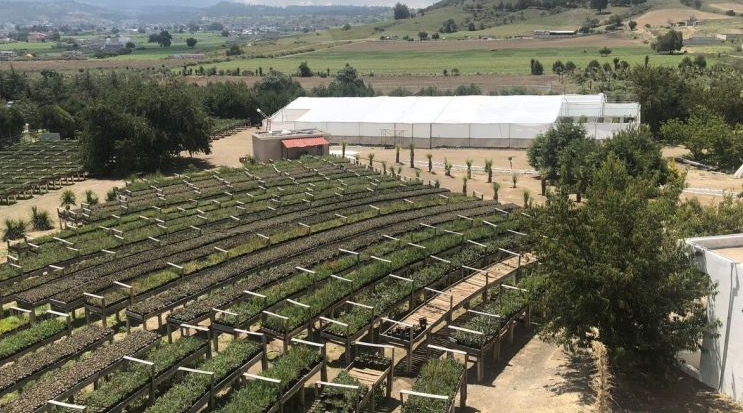 Vegetable Origin
Vegetable Origin
4+ MIN
26/09/2023
Pet food experts harness the power of yucca
Let's explore the importance of the concept in pet foods, specifically highlighting the benefits of incorporating Yucca schidigera, a natural ingredient, and shedding light on farming practices that sustainably harvest this powerful plant. Sustainability in pet foods Pet food production carries its own unique ecological footprint, from sourcing ingredients to packaging and transportation. Embracing sustainable practices in pet food manufacturing not only reduces environmental impact but ensures the long-term health and vitality of our pets. By opting for sustainably sourced ingredients and employing eco-friendly production methods, we can contribute to a greener future for our furry companions. What is Yucca schidigera? Yucca schidigera, also known as Mojave yucca, is a plant native to the southwestern United States and northern Mexico that has gained recognition for its numerous health benefits in pet food. The plant contains natural saponins, which possess anti-inflammatory and antioxidant properties. Incorporating Yucca schidigera into pet food has been found to alleviate joint pain, promote healthy digestion, reduce fecal odor, and support overall well-being. It's important, though, to recognize that not all yucca products are the same. How yucca is farmed and harvested can vary. Sustainability starts at the source, and regenerative agricultural practices are needed to ensure that yucca production is both environmentally and socially responsible. Working with trusted suppliers assures pet food producers that their ingredients are from safe, reliable and sustainable sources. Companies such as Alltech understand the importance of regenerative agriculture. Alltech's state-of-the-art production facility in Serdán, Mexico — where Deo-Pet®, a yucca-based pet food ingredient, is produced — is leading the way. A responsible harvest Alltech's yucca harvest management system enables us to ensure the long-term continuity of the species. The planting area, harvesting methods and cutting plans are determined following the regulations established by the Ministry of the Environment and Natural Resources (SEMARNAT) of Mexico. Alltech Serdán, located about 120 miles southeast of Mexico City, supports and advises potential suppliers, mostly local families, as they learn to harvest the yucca responsibly. These suppliers only cut plants that are at least 15 years old, and they cut carefully to ensure rapid regrowth. Alltech also trains them to collect, store and remove the yucca in a way that avoids environmental damage to surrounding flora and fauna. Reforestation and beyond According to the reforestation rules of SEMARNAT, for every yucca tree harvested, one yucca seedling must be planted. Alltech goes above this requirement: for every yucca tree harvested, three trees are planted by local farmers. Alltech supplies the seedlings and provides training and annual programs to review these reforestation efforts. In 2022, the Serdán facility planted 80,046 seedlings in its nursery and reforested 61,113 seedlings. Alltech Serdán also uses Yucca waste to produce compost and improve yucca seedlings growing in the nursery, reducing the total waste taken to the landfill by a full 88% from 2019 to 2022. The facility as a whole uses compressed natural gas, which reduces its CO2 emissions by 17% annually. It's also home to Alltech's first global renewable energy project, a photovoltaic solar energy system that further reduces the plant's carbon footprint. Commitment to the community At Alltech Serdán, our commitment to a better world goes well beyond responsible yucca production. We also plant seeds of hope and connection. Alltech Serdán has been certified by Empresa Socialmente Responsable (ESR) as a socially responsible company. This prestigious endorsement is given to businesses in Mexico that are committed to policies, programs, decision-making and actions that benefit the business and have a positive impact on people, the environment and the communities in which they operate. The ESR certification requires companies to meet expectations in five pillars: quality of life for employees, business ethics, community involvement, environmental awareness and corporate management. The Serdán production facility, which started with 15 employees, now has 200, making it the only significant employer in the town. It also generates employment for the 50–70 local families who supply yucca plants. Alltech Serdán participates in numerous social projects that benefit local children, including its support of a primary school, a special-needs school, the Casa Hogar orphanage, and several other local organizations. Nourishing pets and protecting the planet Sustainability means taking positive action today for the success of tomorrow, and supporting companies and suppliers that prioritize responsible farming practices encourages the future adoption of sustainable approaches throughout the pet food industry. As we move forward, there's always room for innovation and improvement. New ideas in pet food production, like Alltech's incorporation of sustainably sourced Yucca schidigera, are a vital step toward a greener and healthier future for our pets, our communities and our planet. By: Janella Hurst Source: Alltech
 Ingredients
Ingredients
4+ MIN
25/09/2023
Creating a trusted and reputable brand in the pet food industry
Establishing your pet business and standing out in the market comes down to trust and loyalty, especially as the trend of pet humanization continues to take center stage. Pet owners are seeking out brands that will ensure their pets long, healthy, and happy lives. Engaging with your customers in a meaningful and sincere way helps build trust, and it's essential to lead with science and education as a first step in creating long-term value. How do you address the growing concern among pet owners regarding the quality and safety of pet food products? The pet food industry has faced increased scrutiny over the years. It's important for ingredient companies like QRILL Pet to share their approach to transparency, quality control, and safety in their pet food range. This will gain the trust of brands, manufacturers, and pet owners alike. Now, this isn't just a 'nice to have' business strategy, it's a must. You can't only talk about what you are doing, you also need to follow up your brand story with tangible actions. What key elements are essential in building a trusted and reputable brand? Always lead with science, and remember to communicate the documented health benefits and science of your product in a comprehensive way. Pet parents are more educated these days and want to know what is on the inside of their pet food and treats. Work to continuously improve the quality of your product. Remember that sustainability for all reputable brands is business critical. Be genuine in your marketing and show that the health benefits your product brings differentiate it from the rest. Can you describe a successful branding campaign or initiative that significantly enhanced a brand's reputation? In 2016, we tested our first Omega-3 Index tool on pets. The Omega-3 Index is considered a 'gold standard' for measuring omega-3 status in the human body by showing how much EPA and DHA are found in the blood cells. The Omega-3 Index method shows not only acute omega-3 intake (like plasma measurement does, for example) but also long-term omega-3 intake, which is related to real omega-3 health benefits. As a comprehensive and valuable tool for humans, we decided to use the same testing method on pets, therefore in 2016, we did our very first Omega-3 Index study on dogs. "The Omega-3 Index method helped us set the standard for the pet food industry." The results were astonishing, and we realized how krill can work in a dog's body. With this tool, we were able to help set the standard for the pet food industry by using an innovative method to demonstrate the importance of backing up a product's quality with measurable factors. In today's digital world, how do you handle online reputation management and respond to potential brand reputation threats? We pay attention to what is around us and also to what's trending, making it a point to be ahead of the curve. We know that it is crucial to always be up-front, honest, and transparent. There is no extra room for speculation, especially in our business. All the information a customer or consumer wants to know is easy to find, therefore transparency is vital. It is essential to have people with special knowledge (such as our communications department) to help navigate and lead the narrative. It's important to have honest and meaningful discussions in order to be taken seriously. What role does customer experience play in shaping a brand's reputation, and how do you prioritize it in your branding efforts? We learn a lot from our customers and their real-world experiences as it relates to our products. And we take those learnings seriously. As a leading ingredient for pet health, we are continually looking for ways to use krill in different applications and to innovate in a way like no other company is. It's all about adapting to our customers to give them what they want. How do you measure the success of branding initiatives in terms of building trust and reputation? It's all about lifetime value. We know that we are successful with our initiatives when we have created long-term relationships with our customers. We value their recommendations and insights, and together we are leading a category with huge potential and possibilities. How do you leverage customer feedback and testimonials to strengthen your brand's reputation in today's market? It's essential that we listen to our customers and that we offer products and services that fit into their portfolios. One example is finding solutions for our customer's needs. We have customers who are interested in oils as supplements for their portfolios, so we did our best to connect them with factories that could facilitate this service for them. Another example is creating content marketing strategies. We have taken the lead in helping some of our customers develop content and visuals that will help take their businesses to the next level. Source: Qrill Pet
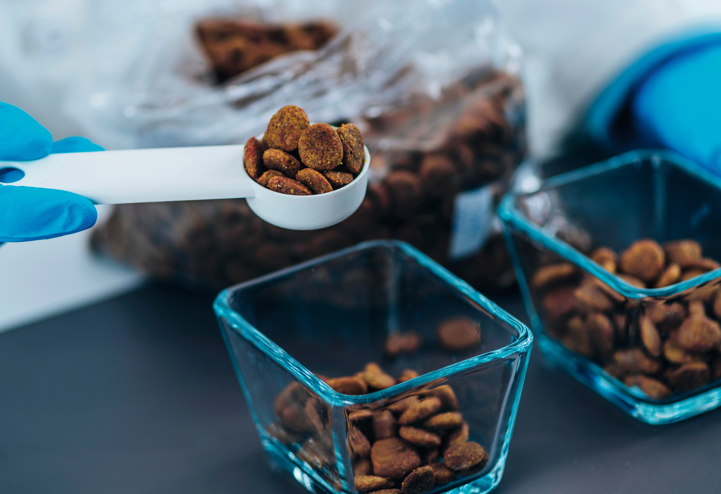 Manufacturing Process
Manufacturing Process
3+ MIN
22/09/2023
Deadly mycotoxins in pet food cost pet health and brand trust, Bühler has an answer
Product recall is expensive One of the major costs of mycotoxin contamination is market recall. Recalling a product from the market is not cheap, in fact, the Grocery Manufacturers Association (GMA) discovered that the average cost of the market recall is USD10 million in direct costs alone. The financial hits of product recall include: disposing of the product, reimbursing customers, and business interruption. The GMA survey showed that 81% of respondents deemed the financial risk of market recall to be 'significant to catastrophic.' Contaminated product damages brand image Financial costs and damage to health are not the only repercussions of mycotoxin contamination. Once the media are aware of the situation, brand image can take a significant hit. For consumers, it takes a lot to repair trust in a brand, and while brand damage is difficult to measure, this can further cost companies millions in lifetime value. Contaminated product can cause mass waste Before the LumoVision, contaminated grain would have been disposed of in large amounts. During testing, if the batch has a high concentration of mycotoxin, in many cases, the entire batch is destroyed. In fact, as few as 2 highly contaminated grains in 10,000 can render an entire batch unsafe. The Food and Drug Association (FDA) estimates that USD932 million is lost per year to crops contaminated with mycotoxin. This removal of the contaminated material may protect the consumer, but it costs businesses and the environment a lot more. What can be done? Bühler SORTEX faced the challenge of mycotoxin contamination head-on. After discovering a breakthrough 'invisible indicator' of contamination on the spectral scale, Bühler created the LumoVision, an optical sorter that can reduce the aflatoxin level by up to 90% (as indicated by industrial trials). This reduction brings many samples to regulation levels, saving companies from the costs of large-scale material waste and market recall. It works by analyzing the color each kernel fluoresces as it passes under powerful UV lighting in the sorter. It is known that contaminated kernels fluoresce a specific bright green color, a substance called kojic acid, which is produced by the Aspergillus fungus at the same time as it produces aflatoxin. LumoVision's proprietary, highly sensitive cameras and a powerful LED-based UV lighting system can precisely detect this color of fluorescence. Within milliseconds of detection, air nozzles deploy to blow contaminated kernels out of the product stream. When dealing with toxins, early intervention is critical. This is not only important in reducing the toxins consumed by pets, but also to lower wastage and the environmental footprint. Without proper cleaning and sorting, poisonous mycotoxins can cause large-scale wastage of materials, mass market recalls, and harm to pets. Dr. Gerardo Morantes, Director of Food Safety-Americas Region at Buhler, had the following to say: 'Mycotoxins are a worldwide concern. However, technology made possible by Bühler SORTEX enables a preventative solution, meaning that mycotoxins can be dealt with early, stopping the spread and removing the contamination to meet regulatory standards.' Without intervention, mycotoxin contamination can bare a large cost for businesses, including, brand reputation, market recalls and material waste. With the SORTEX LumoVision, brands can stay profitable, customers can stay happy and pets can stay safe. For more information on how Bühler and LumoVision are kicking out mycotoxins, visit their webpage. Source: All Pet Food Magazine
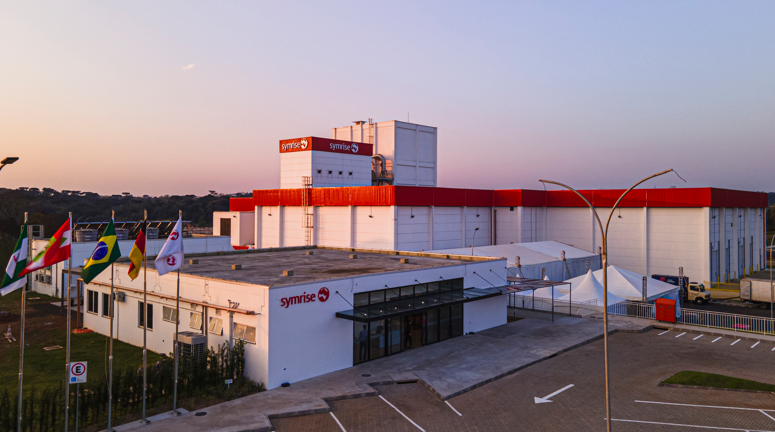 Market Information
Market Information
3+ MIN
21/09/2023
Symrise Pet Food inaugurates new production facility in Latin America
The biggest footprint of Symrise Pet Food worldwide With an infrastructure of more than 10,000 square meters, the factory stands as the largest of its kind in Latin America and is the biggest site of Symrise Pet Food worldwide. It is conceived using state-of-the-art technologies with full automation delivering high operational efficiency. Lastly, it follows the company strict food safety and environmental standards applied on all its sites worldwide. The Closer, The Better The new site in Chapecó is part of the Symrise Pet Food global investment plan to pursue local development following the company motto 'The Closer the Better', which aims at growing closer to its suppliers and to its clients ensuring them a consistency of supply. The company already inaugurated two other factories in the last 3 years: one in China and the other one in Colombia. The Chapecó facility comes in addition to the existing factory located in Descalvado, in the State of São Paulo. It strengthens Symrise Pet Food presence in Latin America enabling the company to triple its production capacity in Brazil. The site will help anticipate the growing demand on the Brazilian and other LATAM markets. It will also supply other countries globally thanks to a portfolio of products formulated to reduce sanitary barriers. Teamwork: the cornerstone of Chapecó The project which results in a site that employs more than 50 employees and which favored the generation of many indirect jobs for its construction, would never have been possible without a strategic collaboration between the company and the local government. According to Fernando Putrino, General Manager for Brazil, 'we had the challenge of building an unprecedented factory that would supply not only the local market (which continues to grow year after year) but the entire world! We celebrate today the opening of our new site which happened thanks to the commitment of our passionate team and the unconditional support of the local government. Together we can show to the whole world what the Brazilian industry is capable of!' An opening with the discovery of all the sites features At the end of the inauguration ceremony, all guests took a tour of the site to learn about more about the end-to-end palatants production process. During the visit, Symrise Pet Food executives took the opportunity to explain the company strategy and vision and to reassert Symrise's commitments to sustainability. Gonzalo Rodriguez, LATAM General Manager stated : 'I am very excited to host such an event because it is a great opportunity for us to show our colleagues in the industry why we are leader in our business and that it is not just 'magic' that happens in here; but rather a combination of more than 40 years of experience and passion that we have manufacturing palatants'. He also added regarding the production process, "thanks to the visitor corridor we built above the plant, we can show not only the production process from a privileged observation point, but also tell our visitors what happens before starting to manufacture a palatant: many people did not know that before going on the market a palatant is tested 150 times to confirm its performance! Nor did they know that all our new products are evaluated on their environmental impact in 7 categories to assess the best formulation to choose to comply with the commitment we took to lower our environmental footprint." About Symrise: Symrise is a global supplier of fragrances, flavorings, cosmetic active ingredients and raw materials, as well as functional ingredients. Its clients include manufacturers of perfumes, cosmetics, food and beverages, the pharmaceutical industry and producers of nutritional supplements and pet food. Its sales of approximately € 4.6 billion in the 2022 fiscal year make Symrise a leading global provider. Headquartered in Holzminden, Germany, the Group is represented in more than 100 locations in Europe, Africa, the Middle East, Asia, the United States and Latin America. Symrise works with its clients to develop new ideas and market-ready concepts for products that form an indispensable part of everyday life. Economic success and corporate responsibility are inextricably linked as part of this process. Symrise – always inspiring more … Source: Symrise Pet Food
 Formulation
Formulation
3+ MIN
20/09/2023
Por Candela Bonaura
Did you know about all the control stages commercial food should go through to guarantee the quality that reaches the pet's plate?
There is a large offer, and veterinarians should have tools to be able to discern between the different nutritional proposals, not only about the pet's needs according to species, age, size, and particular situation or physiological state but in the knowledge of the manufacturing company and interpretation of the quality offered. On the one hand, we must consider the table of centesimal composition as well as the specific protein contribution, fat and metabolizable energy. However, it should always be linked directly to the list of ingredients to determine not only quantity but quality. This list should have its ingredients in descending order, so those foods that contain animal protein in the highest order are superior to those that do not. On the other hand, there are more ways to add value to food and improve diets with nutraceutical ingredients and upgrade the proposal according to specific needs, such as oral, joint, and urinary care, among others. Likewise, manufacturing companies must or should go through multiple controls, from raw materials selection to final product preparation. The goal should not only guarantee the contribution of the necessary nutrients but also their safety. Some of these controls are physical, chemical, sensory, and microbiological, and they are carried out at different stages of the process. In addition, there are standards and entities that regulate the production process and may differ by country. For instance, EU regulations detail which safe ingredients and additives can be used in pet food manufacturing. The ingredients can be of animal or vegetable origin. Many of the animal-derived ingredients used in pet foods come from parts of them not consumed by humans for cultural or habitual reasons. Today the importance of caring for finite resources in many parts of the world is a fact, and sustainability has also taken an important place in this area. Plant-based ingredients are often common in both human and pet nutrition (corn, rice, wheat, oats, etc.). Others are specific to pet food. Pet food manufacturers include intake instructions on the food label, including storage and handling requirements. Guardians should evaluate the container for information on the expiration date and batch of the product. A responsible pet food manufacturer will take safety and quality very seriously and have their own defined processes and standards that help ensure the safety and quality of their ingredients and products. These should start with trusted suppliers and go all the way to feeding the cat or dog and are likely to include: Reliable suppliers selection Defined specifications for raw materials, periodic inspections, and tests They may require a certificate of analysis from the supplier. Nutritional profile, color, texture, digestibility and palatability, and technical parameters such as moisture content. Routine product testing. Visual inspection of the grinding process Measurement of quantities of raw materials Controlled temperatures and cooking times Regular sampling and testing of final products Registration of ingredients through batch records, final product pallets, and their destinations to ensure traceability Microbial testing routine Regular verification of packaging integrity Metal detection or contamination with foreign objects Verification of nutritional adequacy through analysis of raw materials or final products or feeding studies using nutritional guidelines A responsible manufacturer may choose to implement voluntary third-party audits and certifications through a third-party accreditation institute. Stages that lead the raw material to be the food consumed by pets Source: All Pet Food Magazine
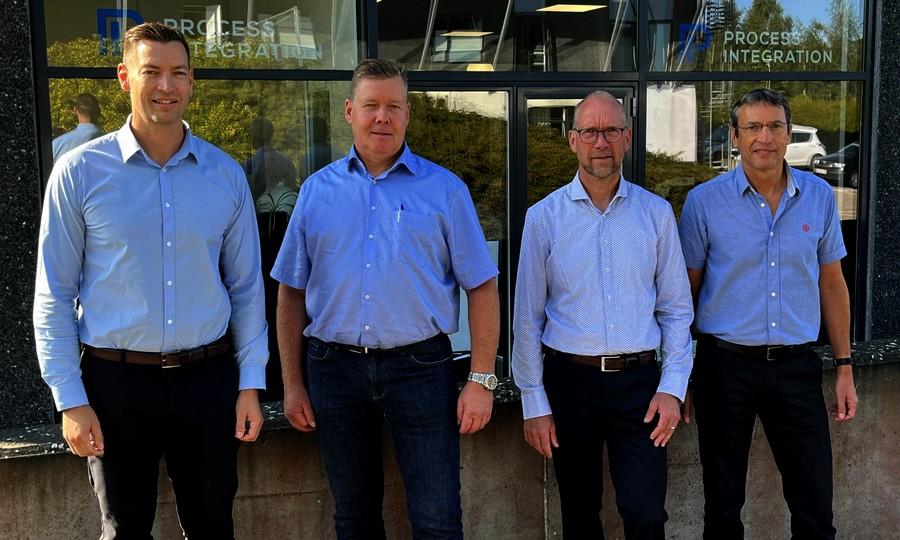 Market Information
Market Information
2+ MIN
19/09/2023
Feed factory builder names new chief executive
Fish feed factory builder Process Integration (PI) has appointed food processing industry consultant Niels Malling Laursen as its new chief executive. Denmark-based PI, which has an installation company in Norway, an independent division in Chile, and a sales office in the United States, has been working with Laursen for a year as it expands geographically and in the scope of its abilities. Founders Sti Løvgreen and Lars Johansen opted to enhance leadership while concurrently allocating more time to strategic endeavours, sales, and the technological advancement of the group. Strong team 'It required some consideration to accept the CEO role while retaining the position as head of the project department,' said Laursen, who has been an independent consultant for dairy and meat processing for several years and was previously a director in several food companies. 'However, I possess a deep understanding of the company, and with such a strong and positive team, I am genuinely thrilled to contribute to taking the company to the next level.' PI has also hired Kurt Myhlert Olsen as the head of administration/HR and finance. Olsen has broad experience in administration and financial management, partly from the dairy industry, the process industry, project management, and as an independent consultant in finance and advisory services. Established in 2015 with its headquarters in Skanderborg, Denmark, PI specialises in building, maintaining, and optimising process facilities worldwide and currently employs 86 people. Not just fish feed 'Throughout our journey over the past eight years, it has been crucial for Sti and me that we have grown at a pace that the organisation can keep up with,' said co-founder Johansen. 'Initially, it was primarily fish feed and pet food factories that we serviced, but today we have just as many projects in food production and other industries, and the scale of the projects we receive is often larger than before. The demand for our in-house capabilities has led us to establish a robust engineering department.' Løvgreen said the company was now so well equipped that it could build complete process lines. 'It is a great asset for us to have Niels as CEO; he has extensive knowledge of process facilities and project management. Kurt also brings significant experience and has been a valuable addition to the group, as we understand the importance of taking good care of our employees and running a healthy company.' by Process Integration
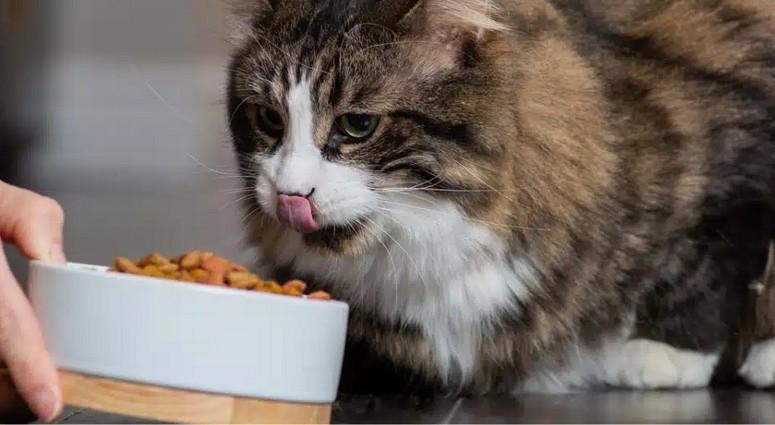 Palatants
Palatants
3+ MIN
18/09/2023
Pet Fair Asia 2023 Reflections
Pet Fair Asia is considered the benchmark exhibition for pet supply companies in Asia-Pacific. The event gives significant importance to Asian markets and presents a wide coverage of supply chain and sourcing needs. In this blog, Charlie Xie, Technical Service Manager for AFB China, reports on various market trends and products while at the event Compared with traditional baked kibble, some manufacturers have redesigned the shape and introduced multiple colors. It is relatively novel among many baked kibble brands. Some brands and manufacturers have also designed chips for pets, similar to potato chips eaten by people. The main component of chips for pets is meat. The chips are very crispy, meeting the cat's texture preference. Dogs also like to eat these chips. One company was displaying freeze-dried dietary fiber meat, which increases the intake of dietary fiber in cats, helping to promote intestinal peristalsis, prevent intestinal hairballs, reduce constipation, and reduce fecal odor. Multi-colored Kibble Looking at customized meals for pets, the daily nutritional needs are customized according to the physical condition of each pet. The corresponding nutritional plan is formulated according to age, weight, gender, and other information. The daily diet could include kibble, freeze-dried, wet pet food, snacks, etc. The diet will also be customized according to customer requirements, such as plans to help fur appear healthier and more beautiful, increase intestinal health, improve oral health, and support weight loss A new concept around wet food packaging is the mini can of cat food. Cats are often fed many times a day, leading to relatively small food intake at each meal. When using a can, there may be a surplus, resulting in leftover food that is not fresh. Therefore, a brand has designed a smaller package where each mini can is 35g. This can be consumed in full every time, and part of the package is transparent so you can see the contents. Another packaging product was the Tetra Pak Packaging Wet Pet Food. Using sealed filling Tetra Recart packaging technology, low-carbon paper, environmentally friendly, recyclable materials, to promote sustainable development. This packaging uses Tetra Pak's first 9-layer packaging technology, and the shelf life can reach 24 months without adding any preservatives 35g wet cat can food and Tetra Pak Packaging for wet food Other products that were displayed were around special needs, such as a pill used to wrap medicine. Often, pets refuse to take medicine due to poor palatability. In order to solve this problem, the brand has designed a medicine-feeding product, which wraps tablets so pets successfully take medicine. This pill has very good palatability, which can cover up the bad taste. Some brands make pet nutritional supplements into the shape of coffee capsules, mixed with water, and fed to pets for pet nutrition supplements. Pills used to wrap medicine. Attending these types of shows is valuable to market research. At AFB, our palatants are specially designed to make pet foods, treats and supplements taste better. Seeing new products in person helps us support our customers using new technology. Please reach out to Charlie Xie at [email protected] if you want to learn more about AFB palatants and our services and solutions in China. We Make Pet Food Taste Great.TM by AFB International Source: All Pet Food
 Manufacturing Process
Manufacturing Process
3+ MIN
15/09/2023
PROMAS ST, future proof automation
This process automation control system is based on years of expertise and knowledge of the production processes, in the animal feed and food industries. This means that the design has been thoroughly tested in practice. Therefore, you can be assured that the process automation system provides all the functionalities to automate business processes adequately. Of course, the design is robust and flexible, making it last as long as the machinery. PROMAS ST factory automation software is developed from the operator's point of view. KSE PROMAS ST future-proof process automation technologies grows along with a factory. Due to its flexibility, this automation solution will last for years to come. If a factory or machines must be renewed or updated, it is possible to implement adjustments with PROMAS ST process automation technologies, in small and profitable steps. Expensive investments in new automation systems are therefore a thing of the past. Small-scale activities can also benefit from PROMAS ST process automation technologies. Start small and when the system grows, the investment can be spread over a longer period. PROMAS ST process automation technologies is a flexible solution for production automation and it is ready for the future. In other words, PROMAS ST is a flexible solution for plant automation that is ready for tomorrow's challenges. How automating manufacturing processes will bring you peace of mind? KSE's PROMAS ST software for automating manufacturing processes brings performance improvements and cost benefits to the animal feed and premix/mineral industries. Nearly 50 years of KSE's specialized know-how in the animal feed industry is encapsulated in this software. This means your equipment (including third-party machines) will perform as intended and, often better than you expected. Automating manufacturing processes with PROMAS ST will get you more tons out of your production line and a better-quality product. All performance indicators can be viewed from anywhere in the world. This brings you peace of mind! PROMAS ST is also hardware and software independent, so you get a better return on investment. PROMAS ST factory automation software is developed from the operator's point of view. KSE´s aim is to create a future proof and intuitive platform that gives operators the insight and control they need to run a seamless operation. This software transforms data into visual and actionable information, so that operators can maintain a clear overview of the production process. We have automated tasks that were repetitive and made complex processes transparent with clear visuals and reports. Timely alarms ensure operators are aware of tasks that require attention and ensure you are a step ahead of potential delays. Otherwise KSE´s 24/7 remote support service is ready to tackle any problem. KSE through the years Over the years, KSE has specialized in dosing and weighing systems and smart automation software for the animal feed industry. They are clearly focused on continuous innovation, which is passed from generation to generation. Personal contact, excellent service and a passion for the powder and granulate processing industry are key. This has helped them grow from a small company to an international business with activities worldwide. KSE is celebrating its 50th anniversary. For more information, visit KSE´s website. Source: All Pet Food
 Market Information
Market Information
3+ MIN
14/09/2023
Who wants pet food regulation? We all do!
While Australia currently has a voluntary standard in place for pet food that Pet Food Industry Association of Australia (PFIAA) members adhere to, there is no obligation for non-members to follow the processes and protocols to ensure your pet's food is safe and compliant. Unfortunately, over the years, this has led to failings in food safety and pet deaths. A recent PFIAA survey has highlighted that pet owners are demanding mandatory regulation of the pet food industry, with Queenslanders (93%) and Victorians (88%) leading the charge and pushing for the government to do more. Currently, the voluntary Australian Standard AS5812 covers processes to ensure the quality of food produced, nutritional requirements are met, guidance on the use of additives and what information is to be made available on the pack for consumers. The Standard has been further strengthened to include annual third party audits of PFIAA members and the introduction of a mandatory recall protocol for pet food quality and safety issues to align with human food recalls. In the data collected by the PFIAA, 97% of pet owners agree that the quality of pet food they give to their pet is important for their health and wellbeing. They also feel strongly that a quality assurance process should be included in the Standard (83.6%) along with nutritional requirements being met (80.4% of pet owners surveyed). Interestingly, pet owners would also expect information on how the food is produced and hygiene should be included, and almost half (49.8%) demand that the marketing of products should avoid making misleading claims. The inclusion of food purpose (dietary or therapeutic) would also be a welcome addition to the Standard, which 42.2% of pet owners would like to see. Understandably, pet owners are concerned about pet food being produced in Australia without any mandatory regulation, with almost half of pet owners surveyed holding concerns over manufacturing practices and the quality of the food produced. PFIAA data shows that 33.6% of pet owners are deeply concerned about what ingredients are allowed in pet food, with 63% agreeing that a list of banned ingredients must be included in the Australian Standard. However, only 14.3% of pet owners are concerned about the nutritional value of their pet's food; Northern Territory and New South Wales residents were primarily concerned with the quality and nutritional value of their pet's food, while Queenslanders and Victorians were far more worried about ingredients. To have mandatory regulation of our pet food industry here in Australia, the question naturally turns to what the consequences of non-compliance would be and what impact a non-compliant pet food would have. PFIAA data suggests that residents in Tasmania (36.4%) and South Australia (30%) expressed the most concern when it came to a lack of consequences for pet food manufacturers who produce unsafe pet food – while surprisingly pet owners in Victoria (9.4%) and Northern Territory were the least concerned. With almost all pet owners surveyed agreeing that health and wellbeing is an utmost priority for their pets and that they care about the quality of the food that they're feeding them with, there is still a lot of work to be done to ensure that pet food produced is safe and nutritious. As a pet-loving country, Australian pet owners demand more from the pet food industry and overwhelmingly want to see the Australia Standards made mandatory. by PFIAA - Pet food Industry Association Australia Source: All Pet food
 Vegetable Origin
Vegetable Origin
3+ MIN
13/09/2023
Por María Candelaria Carbajo
Cellulose and lignocellulose, providing fiber to dog food
Fiber is an alternative to combat obesity and help these pets reduce their daily food intake and, consequently, have an impact on their weight. But it is not the only cause in which fibers are used, such as, for example, cellulose fiber or lignocellulose. Fiber in dog food? Fiber is a complex carbohydrate resistant to dogs' digestive enzymes. Several sources of fiber are commonly used in pet foods, including beet pulp, bran, tomato pulp, buckwheat, and powdered cellulose. In simple words, fiber moderates how quickly food moves through the digestive system, which helps regulate intestinal activity. Dogs do not have a physiological need for fiber. A natural canine diet contains little to any fiber. However, it can be beneficial for today's dogs, including improving gut health, strengthening the immune system, weight management, diabetes, and anal gland disorders. Cellulose, a usable but controversial fiber Cellulose is a fiber found in the cell wall of plants. It is found in the bark of trees and plant leaves. It is an insoluble fiber, which means it either cannot be dissolved in water or absorb it. Today there are different positions on cellulose fiber since certain professionals affirm that, although it is a fiber that increases food volume, it does not have any nutrients, so it must simply be added to the formula and not a main ingredient. Those who defend powdered cellulose in dog food cite ease of use, necessary fiber content, and cost-effectiveness as some of its main advantages. An alternative: lignocellulose Lignocellulose is an alternative that, according to some recent studies, could be a vegetable fiber with great potential for our industry. It is the main component of the cell wall of plants and is a source of XOS (Xylo-oligosaccharides) compounds, which stimulate the growth of beneficial bacteria for the intestinal flora and serves as a type of dietary fiber. Studies and research Scientists from the University of Veterinary Medicine in Hanover, Germany, and Mansoura University in Egypt conducted a study in which 8 Beagle dogs were given 1 of 4 foods for 14 days. These foods were the same except for the fiber they contained: powdered cellulose, granulated cellulose, lignocellulose, and a control food without additions. It could be shown that all 3 fiber types led to lower caloric intake by the dogs, compared to the control diet. At the same time, no cellulose decreased or affected palatability. And while fecal quality was not affected by fiber sources, the feces of dogs consuming fiber foods were wetter, compared to those on the control food. Thanks to this study, the professionals were able to affirm that lignocellulose can be used as an alternative to cellulose as a fiber source in wet dog food. Since lignocellulose reduces gross energy digestibility as cellulose, it can also be used in feed for overweight dogs. Conclusion Choosing the best ingredients for each pet food formula is not easy, considering all the factors that need to be considered: consumer desires, nutritional value, costs, production, availability, and regulations. In the case of cellulose and lignocellulose fiber, as mentioned above, the latest studies have shown that the incorporation of a specific source of this type can improve the health and well-being of companion animals. Research carried out for industry experts as well as for pet owners is critical to moving toward an increasingly science-based, safer, and consumer-focused food industry. Source: All Pet Food Magazine
 Formulation
Formulation
4+ MIN
11/09/2023
Pet Treats Continue on an Upward Trajectory
With his mid-1800s introduction of the first dog biscuit, Mr. James Spratt probably suspected he was onto something big. But there's no way he could have known he was lighting the fuse on a $60 billion market for pet food and treats. During 2022, pet treats (including rawhide chews) represented about one-fifth of those dollars, closing in on $12 billion, and treats remain a leading pet market category. Like many types of pet products, treats were at the right place at the right time during the pandemic, which helped to boost sales by 20 percent in 2020 and 18 percent in 2021, and the annual percentage gains remain in the low double digits thanks in part to inflation-related price hikes. As of May 2023, nearly three-quarters (73 percent) of dog and cat owners used treats to bond and spend quality time with their pets, and nearly half (49 percent) were treating their dog/cat more frequently as a result of spending more time at home. The enduring success of pet treats is, of course, more than a function of luck. As much as any pet product, treats dovetail pet health and pampering, and from that first biscuit, the market has been segmented every which way. The products are, in other words, anything but one size fits all, closely aligning with key trends in human foods and pet food overall. Grain free, natural/organic, functional ingredient, novel protein and human grade are among the most sought-after types, with more indulgent items also in demand along with dental chews and treats that meet both functional and pet pampering/entertainment needs. Topping the chart as of May 2023 was U.S. sourced, with 49 percent of the dog owners and 40 percent of the cat owners who had purchased treats in the previous 12 months opting for made in USA, with no artificial ingredients/preservatives, organic, grain free, natural, and limited ingredient also high on the list. The COVID-19 effect has not been all good news for pet treats, which have been facing the same post-pandemic headwinds as most consumer categories in the form of record- high inflation. A potentially longer-term and not altogether positive impact is the acceleration in online shopping, which was already going strong. Frequently strategically placed on endcaps or near the checkout, treats are often a spur-of-the-moment purchase more likely to happen instore. Over three-quarters (76 percent) of dog/cat owners buy pet food and treats on the same shopping trip instead of separately, and more than two-fifths (42 percent) view pet treats as an impulse purchase. In an omnichannel world where sales continue to shift onto the internet, it's on e-tailers and marketers to cross-promote treats to online shoppers in the market for pet food. As of 2022, e-commerce represented approximately 34 percent of dog and cat treat sales, but by 2027 that share is expected to rise to nearly 40 percent Helping to pick up some of the slack is the slew of online-based subscription box programs that have popped up in the past several years. BarkBox, one of the earliest and now the largest, delivers on a monthly basis a range of products to pet owners including at least one treat sample. Subscription boxes present an ideal opportunity for marketers to introduce products to pet owners on a "try it, like it, buy it again" basis, as well as to help offset the negative impact of missed in-store purchases. With the success of BarkBox and similar programs, treat-specific subscription programs have popped up, allowing pets and pet owners to try out a different selection of treats on a steady basis. Harkening to the potential, even pet specialty retailers have gotten on board, with Petco teaming up with PupBox and Chewy offering Goody Box. At the same time, the business continues to shift in the direction of functional treats, which are increasingly doing double duty as, and competing with, pet supplements. In addition to catering to health-focused pet owners, functional treats appeal to value-conscious pet owners swayed by the idea of getting "two in one" value in treats that address specific conditions. Functional treats serve as an integral part of many pet owners' pet health and wellness routines; as of May 2023, a large majority (70 percent) were willing to spend more for treats that addressed specific health concerns. Another flourishing segment is cat treats, as more marketers expand their offerings to embrace this "second-class pet," which is currently outpacing dogs in population growth. Looking ahead, pet owners' commitment to pet health and pampering will remain key market drivers, and treats will continue to benefit from being a frequent pet market entry point and crossover opportunity from other categories such as pet food, pet supplements, pet toys, etc. Taken together, these trends portend a healthy outlook, with U.S. retail sales projected to near $18 billion in 2027, reflecting a compound annual growth rate north of 9 percent and billions more dollars' worth of Mr. Spratt's stroke of genius. by David Lummis. Senior pet market analyst for the Packaged Facts brand within The Freedonia Group, a division of MarketResearch.com.
 Cats
Cats
5+ MIN
07/09/2023
How Long Can Your Always-Hungry Cat Wait For Dinner?
Many cats put on Oscar-worthy performances to convince their parents they are constantly starving. Often, they start with jumping on your head at 4 a.m., perhaps followed by biting your toes, stealthily pushing priceless breakables off the counters, or pacing in front of their bowls and yowling nonstop.
But how can you tell if your cat is really getting enough to eat, and how long can they reasonably wait for their next meal? There are a number of factors that need to be considered to answer these questions. For starters, how old your cat is, the kind of foods your cat eats, and any health conditions your cat has can all influence how often your cat needs to eat.
For example, there are big differences in the nutritional needs of growing kittens and pregnant cats, compared to adult cats who are mostly sedentary indoors. It is always best to consult your veterinarian and defer to their recommendations when it comes to the particular nutritional needs of your cat. Here are some general guidelines that may help.
How long can your cat wait between meals?
The short answer is that it depends. And no one knows exactly. Wild felines who hunt need to eat many small meals throughout the day but may also go long stretches without food. On average, hunting cats eat about eight to 10 small prey a day, so they spend the majority of their waking time stalking, chasing, and hunting in order to meet their dietary needs. For our pet cats who spend most of their time lounging indoors, they tend to burn many fewer calories and have access to higher quality diets. Their needs for food are quite different. Studies have shown that cats' stomachs empty between four to eight hours after a meal, depending on what they eat. So, while your cat may be able to go up to eight hours between meals, most nutritionists recommend feeding many small, frequent meals throughout the day to attain the best physical and mental health for your cat. So, if you're planning to go out of town, it's important that you instruct your cat sitter as to how often your particular cat needs to eat.
Do different foods affect hunger differently?
What you feed your cat may affect how often they need to eat and how quickly they become hungry after a meal. Some factors that influence this include protein content, fiber content, and whether you feed a dry kibble versus canned wet food.
In cats, protein content influences their satiety, or feeling of fullness, the most. A high-protein diet may keep a healthy cat feeling full the longest. Some cats should not have high-protein diets, such as those with kidney disease, so make sure to speak with your vet before switching to a high-protein diet.
Fiber is also known to play a role in feelings of fullness and to slow down the emptying of the stomach and intestines. This seems to play a smaller role in cats, compared to humans or dogs. Commercial high-fiber cat diets have not been shown to significantly affect fullness in cats, but certain fiber supplements containing inulin do seem to have more of an effect. As always, consider these supplements after consulting with your veterinarian to make sure it is safe and appropriate for your cat. Be aware that adding too much fiber or introducing it too suddenly can lead to gastrointestinal upset, such as nausea and diarrhea.
When it comes to keeping cats full, there is some evidence that kibble actually stays in the stomach longer than wet food, which may keep them feeling full longer. The debate over feeding dry food versus canned food is endless, and there are many valid reasons to choose one over the other. In general, canned food tends to have higher water content, which is very important for keeping cats hydrated. Canned food usually has a pureed consistency, which may cause it to be digested more quickly and easily. In most cases, cats should not eat dry food exclusively for overall good health, but there may be strategic ways to incorporate small amounts of dry food into your cat's diet.
How can you keep your cat from constantly crying for food?
Depending on your cat's particular life stage and health, there are many ways to help them feel satisfied while allowing you to get some sleep, too. For kittens and pregnant cats that need to eat frequently, a timed feeder may be a good option to provide snacks overnight and in the early morning. Remember that these feeding devices are not usually recommended for cats in other life stages because they can lead to overeating and risk of obesity.
For adult cats, food puzzles are a great way to provide smaller, frequent meals while improving your cat's activity level and mental enrichment. These can be homemade or commercially available puzzle-style feeders that require your cat to 'work' for their food. It slows them down and allows them to snack gradually and also gives them a challenge to figure out how to get the food out. The simplest form of a food puzzle would be just hiding kibble around the room for your cat to seek out. More complex puzzles are also available in a variety of styles.
In general, providing smaller, frequent meals may help your cat to feel more satisfied and for those cats that have no health concerns, adding a little extra fiber and higher protein content may also keep them feeling full longer.
Look for these signs of actual starvation or illness in cats.
It is important to note that cats cannot safely skip several meals in a row. This is especially serious for young kittens, pregnant cats, cats with underlying health problems, and overweight and obese cats. If your cat skips multiple meals, it is a sign of illness, and they should be seen by a veterinarian right away. It is also not safe to intentionally skip feedings as a weight-loss strategy. Overweight cats are prone to a condition called hepatic lipidosis, aka fatty liver, that can be triggered by skipping meals. For this reason, it is critical to follow your vet's recommendations on feeding guidelines, especially if you are trying to encourage your cat to reach a healthy weight.
by Dr. Amy Fox, DVM
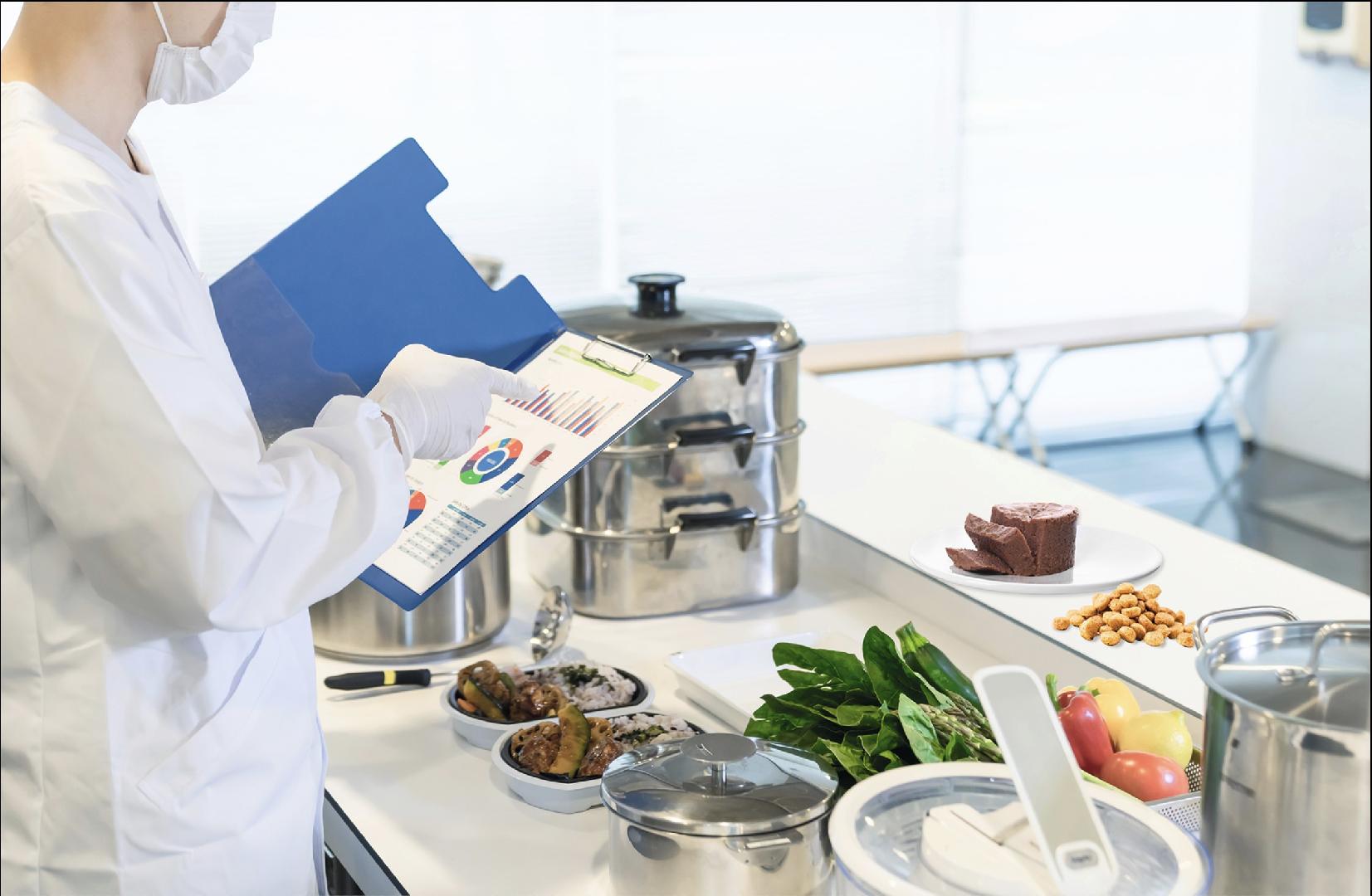 Formulation
Formulation
4+ MIN
06/09/2023
Por Armando Enriquez de la Fuente Blanquet
How is a feed formula designed?
The main problem when formulating foods is to satisfy the nutrient requirements. Then, we talk about formulating a balanced food. There are several methods used to balance rations, from the simplest to the most complex and technical ones. Among them, we can find trial and error, simultaneous equations, Pearson's square, and linear programming. For balancing rations, ingredients are combined to meet the protein, fat, fiber, amino acids, fatty acids, vitamins, and minerals that pets require for health and well-being. Within the formula of the balanced pet food (the recipe), two ingredients require special attention in their precision. I am talking about the vitamin premix and the mineral premix, which are generally separate formulas, as they are made up of more than one nutrient inside. The amounts of vitamins and trace minerals required are few, and they are in the order of micrograms or a few milligrams per day. That is why it has been decided to add them through a premix. Vitamins and trace minerals are essential substances for life. If we supply less than their daily requirement, we will certainly see how the subject develops severe deficiency symptoms that lead to manifestations of deficiency or syndromes. Regularly, the pet food formula contains 1 or 2 of these ingredients: a premix of vitamins and minerals when it is one, or a premix of vitamins and premix of minerals when it is two. Now we analyze the design of the premix formulation that will be included in the complete pet food. The steps in a premix formulation are Defining the premix The first step will be to know which species it aims for: dog, cat, or something else. Then it has to be decided which pet's life stage is: age, size, weight, activity level, race, physical problems, and the like. Our "claim," or value proposition, which can go into the premix. What kind of pet food are we going to manufacture? This can be dry, humid, or semi-humid, in very general terms. Gathering the data of the process parameters, as well as temperatures, humidity, pressures, and times, among others. Knowing the rest of the ingredients of the complete formula of the balanced food: corn, meals of animal origin, oilseed pastes, additives, etc. Having a well-defined shelf life which we must guarantee, be it one or two years. Ingredient selection Speaking of vitamins, their forms must be selected according to the production process the food will undergo: microspheres, spray-dried, coated crystals, adsorption, etc. Regarding trace minerals, we must consider that the inorganic source will affect the vitamins more than the organic or hydroxy sources. Also, we should keep in mind that trace minerals vary in molecular structure as well as in performance in animals. It must also be considered that the premix can be the means to add other ingredients that require precision, such as omegas, some vegetables, mycotoxin binders, and natural or synthetic antioxidants, among others. The vehicle is an important player in the design because it will give it density and properties for correct mixing. They can be vegetables, minerals, or both. Estimating the super-addition, mainly in vitamins Any portion of food must meet the nutritional requirements indicated by international guides such as AFFCO, FEDIAF, or NRC. Therefore, the final product must contain this recommended minimum level at the end of its shelf life. I always suggest starting with a safety margin, that is, above the minimum level suggested by nutritional guidelines. This way, even if the dog or cat eats a little less, or has a higher consumption than the average, that daily dose would ensure that symptoms of vitamin deficiency will not occur. The food manufacturing process involves temperature, humidity, pressure, oxygen, and more. If one or more of these elements affect the vitamins, an over-addition is necessary to compensate for the loss due to processing, so we can reach the desired level. Once the food leaves the production line, it will travel to the market, where it will be available for the pet parent to purchase. In addition, it can also remain on the shelf for some time, and we must also consider a loss due to storage. Premix test The design of the premix on paper is one and, in reality, things may be different. That is why it is important to produce a sample and carry out a mixture, content, and physical analysis. If the premix complies with what was designed, food manufacturing should be run and, once again, carry out a content analysis – now of the pet food–. We should not forget the shelf life analysis. Final part When the premix complies with the design, and we know the product physically, we need our plant personnel to be trained on the importance of this ingredient and the care that must be given to it. Once we have finished the premix, let's take it to production! Pet food formulation must be adequate and precise, particularly with two micronutrients that must have our attention during the formulation: vitamins and trace minerals. The design of the vitamin and mineral premix is as relevant as the design of the food itself, and their development process should be as meticulous as possible. By: Armando Enríquez de la Fuente Blanquet Source: All Pet Food Magazine
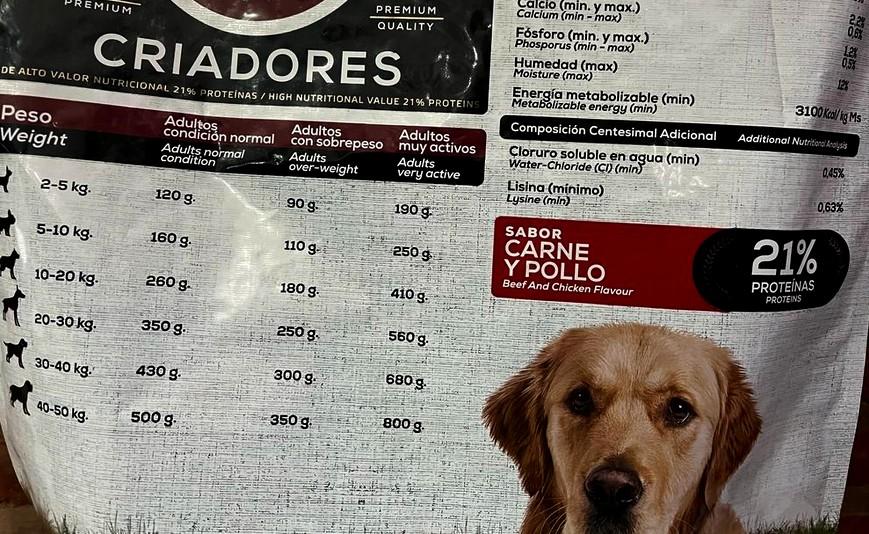 Animal Origin
Animal Origin
2+ MIN
04/09/2023
Popular pet food claims in 2023
Digestive health is also becoming a highly sought-after pet food attribute across age groups, with 47% of pet owners ages 18 to 54 claiming interest in these products, as well as 43% of pet owners age 55 and older. Pet owners are also interested in treats that address specific health issues, according to Mintel, with 36% of pet owners ages 18 to 54 claiming interest in this category, compared to 34% of those ages 55 and up. A wider gap between generational interest is seen for pet food products that are sustainably sourced, with 28% of pet owners ages 18 to 34 interested in this category, compared to 27% of pet owners ages 35 to 54, and 19% of those age 55 and older. Additionally, the rise of functional meal toppers is attracting interest from younger pet owners, with 25% of those ages 18 to 34 curious about these products, compared to 18% of pet owners ages 35 to 54, and 15% of those age 55 and up. According to Mintel and Kantar Profiles, pet owners between the ages of 18 and 54 (19%) are more likely to show interest in pet foods formulated with plant-based proteins than their older counterparts (10% of those age 55 and older). Regardless of perceived interest, pet food and treats with functional claims are taking the industry by storm, with 21% of new cat and dog treat launches in 2022 claiming oral benefits and tartar prevention. Additionally, 7% of new launches touted joint, bone and muscle support, and those claiming digestive benefits and skin and coat benefits both made up 6% of launches in 2022. Global Pet Food Market Trends in the Next Two Years Pet owners are focusing on healthful food – particularly natural options – for their pets. The future of pet food will be influenced by consumers who are keen to offer their pets fresh food, or even homemade options. Mintel anticipates that there will be pet food innovation for animals suffering from increasingly common issues such as obesity who will benefit from personalised diets and technological measures. Companies in the global pet food market must reassure pet owners of the benefits of sustainable pet food beyond planet-friendly credentials. Global Pet Food Market Trends in Five Years and Beyond Pets are taking a more prominent role in consumers' lives. As such, pet owners will focus more on their pet's behaviour. The global pet food market can help improve pets' mental performance through innovative foods that are personalised to match the needs of each pet. Pet owners are increasingly seeking better food options and mealtimes for their pets. Mintel expects pet food innovation with microwaveable packs for in-home use in addition to fine dining options that will hold appeal for discerning pet owners seeking an out-of-home experience. Consumer concerns around water usage are not restricted to human food. Companies will need to share how they are reducing water in their formulations through alternative ingredients or use of freeze-dried options. By Mintel All Pet Food
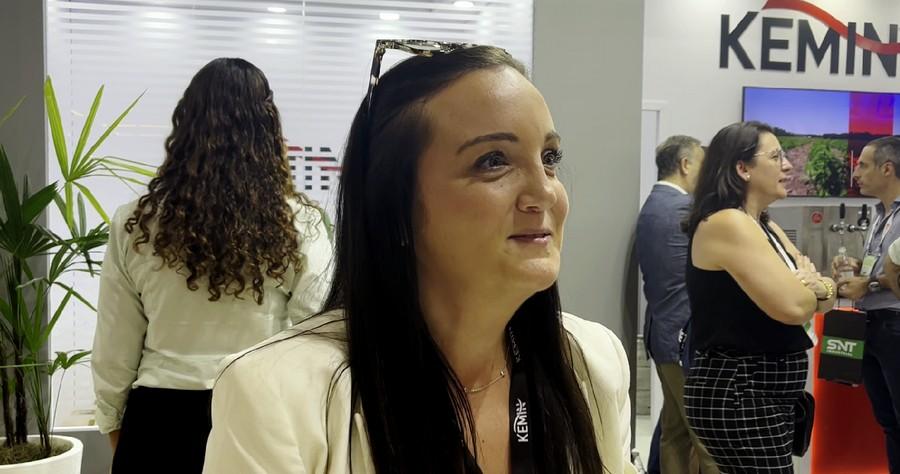 Interviews
Interviews
1+ MIN
01/09/2023
Interview with Kimberly Nelson President of kemin Nutrisurance
Kimberly gives an overview about the future of the pet food industry in terms of nutrition and nutritional ingredients for pets, as well as the way we should deal with the well being for our pets. Don´t miss the Interview: by All Pet Food
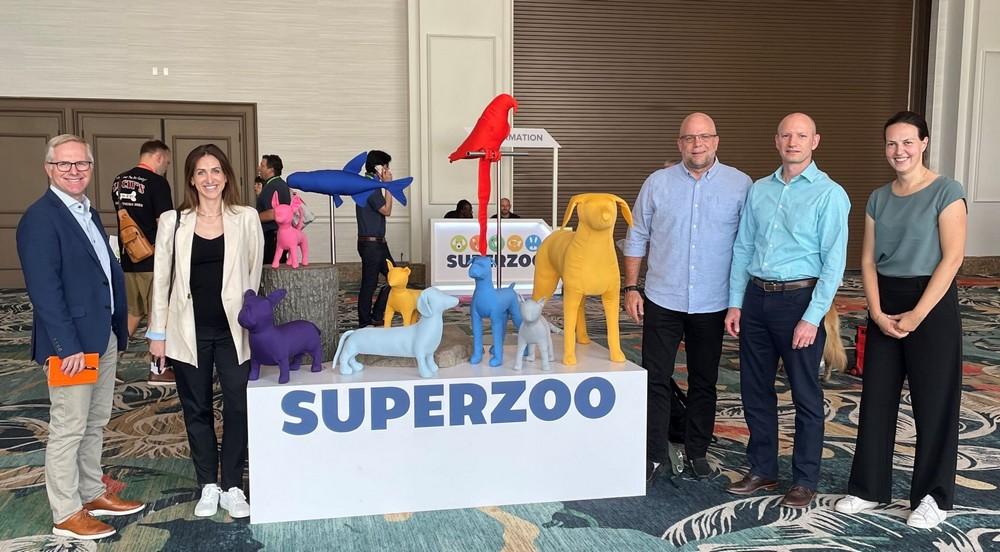 Palatants
Palatants
2+ MIN
01/09/2023
Market Trends and Highlights from SUPERZOO 2023
Dry pet food is being differentiated with broth or raw coatings and various inclusions such as jerky, baked or air dried ingredients to make the classic feeding occasion different for dogs and cats. Functional ingredients continue to dominate coming out of the pandemic with calming claims, new dental designs for mechanical cleaning action, and combinations of historical health focused needs like urinary tract health and gut health in a single item. Wet food continues to add health benefits to elevate above just a culinary experience with additions like prebiotic fiber in wet food, moisture rich for hydration claims, low phosphorous for kidney health, and probiotic inclusion in bone broth. Several established brands with strong equity extended into different feeding occasions or species looking to use that equity to grow. Specific examples are leading snacks brands into complete and balanced kibble and cat focused brands into dog offerings. CBD offerings were available but not near as many as several years ago. Sustainability can be seen in packaging and ingredient sourcing claims but is much less prevalent in NA than EU new items showcases. Insect, which was really prominent at ZOOMARK in Italy, made its way into some diet offerings for NA. UV attractants in litter and flavored bubbles for dogs were interesting items that are signs of the category moving from its focus on supply chain assurance and back to bringing out novel offerings. We are looking forward to seeing the new market trends next year! by AFB International
 Formulation
Formulation
3+ MIN
30/08/2023
Torula yeast for a more palatable, digestible, and nutritious cat food
Yeast in pet food Sustainability in the pet food industry is an ongoing debate that often focuses on the ingredients used in it. Today, protein sources are under scrutiny, especially for their effects on ecosystems and societies, since the resources and conditions needed to develop them can be harmful to various ecosystems. Currently, the best-known type of yeast is nutritional yeast, used to add protein to various foods, although it is also a flavoring agent. There are many different strains of inactivated yeast, and each has a different flavor. One deactivated yeast is Torula yeast, but others used in the market are active, such as beer or bakery yeast. Torula yeast Torula yeast (Candida utilis) is a type of inactivated yeast and is one of approximately 1,500 types of tiny, single-celled fungi. Torula edible yeast grows on wood alcohols and is used when deactivated and dried for flavoring and nutrition. The truth is that, generally, being low on the food chain reduces the environmental impact of a protein source, and mushrooms live near the bottom of it. Raising mushrooms as new pet food ingredients as one that would otherwise go to waste, reduces the environmental impact of animal nutrition. This yeast feeds on the woody biomass left over from the manufacture of wood products, and because wood waste is plentiful, renewable, and does not compete with human food crops, considerable sources of protein can be extracted. Indeed, it's possible to affirm it has favorable properties for extrusion as well as benefits for the animal's digestive system. Torula yeast is free of allergens and heavy metals. Torula yeast in pet food For pet food, Torula yeast may have an advantage over other novel proteins. It is an AAFCO-approved ingredient with a history of safe use. In 2019, feeding trials tested it in dog food and found the fungal protein source works on par with chicken meal, and a more recent study found evidence that torula yeast can also serve for producing cat food. A study at the University of Kansas looked at the use of yeast in pet food. Torula yeast, as well as brewer's and whey yeast, have been categorized as nutritional yeasts when fed as inactive microbial biomass, primarily for their nutritional value. Among the most traditionally used in livestock nutrition, Torula yeast is the most favored in terms of its flexibility of carbon sources and growth capacity. It can metabolize xylose and its oligomers, allowing growth on low-value cellulosic waste materials. Thus, it enables large quantities of microbial protein to be produced from a sustainable and cost-effective growth medium. In addition, producing yeast from cellulosic material has a lower carbon footprint compared to soybean, pea protein, and chicken meal, the elements on which the study's comparisons are based. All four cat foods, with these ingredients, were prepared using single screw extruders under similar processing conditions. The study found that Torula yeast is highly digestible by cats and even increased their preference for food containing it while aiding processing and kibble formation. Furthermore, under similar processing conditions, this yeast resulted in a more extended product, particularly in the radial direction, which caused the lowest density and hardness. The study determined that Torula yeast can be safely included in feline diets, with levels limited for fecal quality considerations. In palatability tests, cats chose more food with Torula yeast than those with chicken meal. However, there was no difference from the other ingredients. On the other hand, the crude protein of Torula yeast digestibility was similar to the other three formulations, with an average of 89.97%. Yet, fats digestibility was lower for this (92.52%) than for the other protein sources. Conclusion Yeast-based ingredients are playing an increasing role in the premiumization of pet food as a source of improved health and wellness for pets in hundreds of pet food markets worldwide. Yeast is no longer only used to improve palatability, but interest is now growing in the value and impact it might have in increasing immunity levels and improving gut health. In this sense, Torula yeast seems a great alternative to incorporate into formulas, although, and while even there is very recent research, experts in the field recommend further investigation to evaluate postbiotic analysis, the mechanisms of the functionality of raw materials, and the implications of protein ingredients on urinary health in cats. Source: All Pet Food Magazine
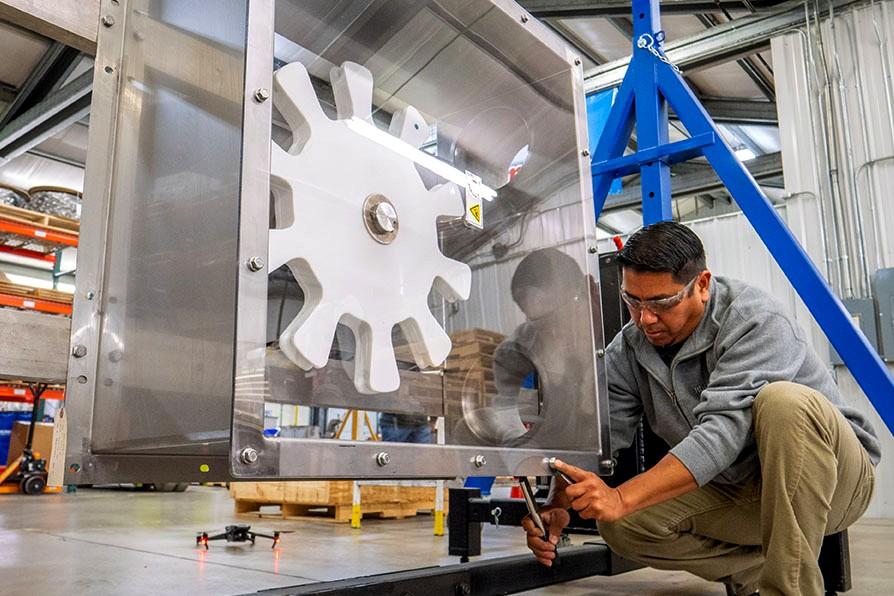 Conveying Systems
Conveying Systems
4+ MIN
29/08/2023
New German test facility allows processors to try solutions before they buy
These systems come as an investment, making it crucial for manufacturers to understand what they're buying before pulling out the company credit card. This is where OEM test facilities come into play, which offer processors the opportunity to try before they buy, often supported by the expertise of seasoned process engineers and salespeople who represent the supplier and its solutions. Testing, testing According to Emmanual Ricohermoso III, Ph.D., testing and facility manager at Automated Handling Solutions (AHS) Germany GmbH, parent company of Cablevey, testing equipment before making a purchase is a progressive approach that can optimize design and material selection for durability, efficiency and environmental impact. 'From the client's perspective, conducting product testing offers them the valuable opportunity to experience the device firsthand before making a purchase commitment,' Ricohermoso added. 'It allows them to assess the device's performance, functionalities and suitability for their specific needs without the obligation of buying it outright. Additionally, during the testing phase, clients can engage directly with our knowledgeable team, leveraging their technical expertise to address any questions or concerns they may have. 'This interactive experience fosters better communication and understanding between our team and the clients,' he added. 'Ultimately, seeing the device in action reinforces the clients' belief and confidence in its capabilities, validating the effectiveness of the solution being offered, or simply, 'to see is to believe.'' The company's 645-square-meter (6,942-square-foot) testing facility is centered around a test workshop equipped with product transfer systems from brands that fall under the AHS and Advanced Material Processing (AMP) umbrella, including Cablevey, Spiroflow, Kason and Marion. The test workshop itself accounts for 71% of the total space. According to Ricohermoso, the German test facility was designed to not only enable testing of conveyors and material transfer systems from point A to point B, but to also integrate relevant processing steps including bag conditioning, bulk bag discharging and filling, dewatering, sieving, mixing and drying. 'Additionally, the test facility boasts a cutting-edge, in-house laboratory dedicated to material characterization,' he noted. 'This enables our engineers to gain a deep understanding of the material properties, allowing them to design tailored solutions that meet the specific needs of our customers. The Friedrichsdorf test facility is now up and running and saw its first customer in early May 2023. Ben Ayrton, managing director and vice president of operations and supply chain for AHS and AMP in Europe, noted that the facility is now fully operational and offers more than 50 products for customer trials and testing across all four brands. 'We are immensely proud to have the most comprehensive testing facility in Continental Europe,' Ayrton said. 'Our expansion and future is exciting, as in addition we are looking forward to introducing a brand new 5,500 m square production facility in the UK in the first half of 2024.' The Friedrichsdorf facility will serve multiple AHS and AMP brands for testing, spare parts, European engineering and sales, as well as aftermarket spare parts and maintenance teams. Prioritizing positive client experiences Understanding why clients want to test or compare equipment performance is the No. 1 consideration when developing a test plan. For example, Ricohermoso said one of the main focuses for today's pet food processors is throughput. Once he has a better idea of a client's priorities, Ricohermoso requests a Material Safety Data Sheet (MSDS) to better understand the handing requirements and potential risks related to the product or material in question. He also asks for cleaning, process flow integration, and tolerance information to create a comprehensive test plan for the client. 'If the client's primary objective is to observe the operation without specific test requirements, I take the initiative to design the test plan myself,' Ricohermoso said. 'The clients are then given time to review the plan internally and communicate any concerns they may have. 'By following this streamlined process, we ensure that the test day runs smoothly, with clear communication and alignment between our team and the clients.' Leaning on OEM expertise Cablevey operates in more than 66 countries and has delivered its solutions for the food, pet food, coffee, powder, nut and frozen food industries for over 50 years. Such equipment includes enclosed cable and disc tube conveyors. 'Cablevey provides a gentle conveying solution, making it particularly suitable for products that are sensitive and have low tolerance for breakage,' Ricohermoso said. 'Its unique conveying method ensures that fragile products can be transported without compromising their integrity or quality.' At Cablevey's stateside test facility — which is located in Oskaloosa, Iowa — the company recently launched a 360-degree immersive experience enabling virtual visits in real time. A Zoom-meeting format developed during the COVID-19 pandemic now allows Cablevey to showcase test runs of its machinery in-person and online simultaneously, which provides convenience for those unable to travel or larger work groups, according to the company. Ricohermoso noted the company plans to add this capability to the German test facility over the next few months.
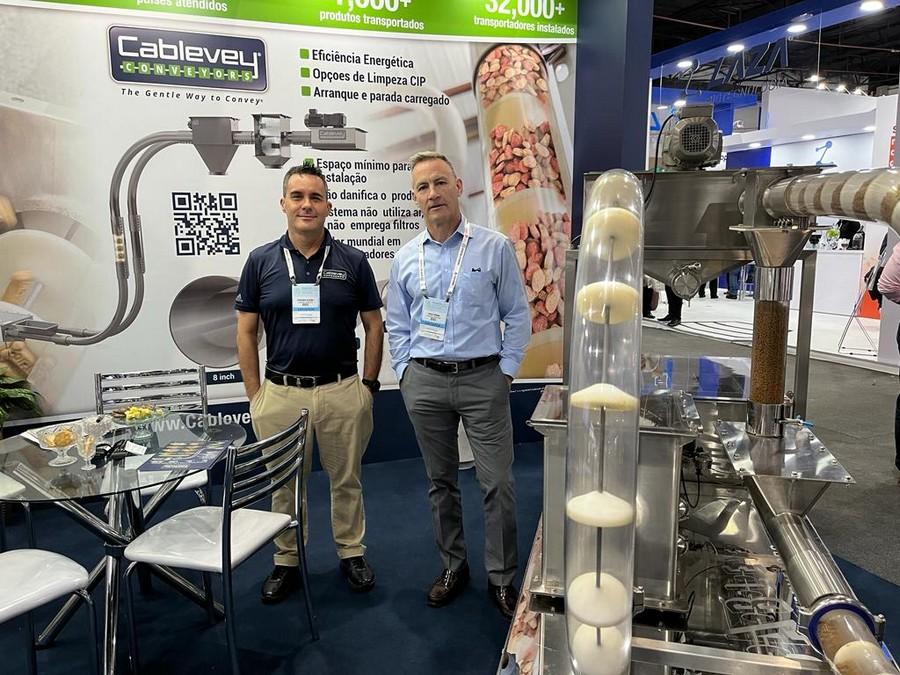 Conveying Systems
Conveying Systems
1+ MIN
25/08/2023
Automated Handling Solutions at FENAGRA 2023 in Brazil
Brad very brieflly introuced himself and the Company, the owners of Cablevey Conveyors and Spiroflow, and highlighted its prsence in the pet food sector. Brazil has been a key market for them within the LATAM region, so they have already planned to grow agresively in that market About Automated Handling Solutions AHS combines expertise in specialty conveyor and material handling and automation equipment technologies to help processors manage their lines effectively and efficiently. AHS' products target applications in high value environments and can support both wet and dry media. Primary end markets served include food and beverage, pharmaceutical, nutraceutical, specialty chemical, and high value industrial. AHS is May River Capital's (May River) newest platform company. by All pet Food
 Market Information
Market Information
3+ MIN
23/08/2023
Inflation in the Eurozone continues to recede
In the first quarter, the GDP had stagnated, after having even shrunk by 0.1 per cent in the final quarter of 2022. Economists expected growth of 0.2 per cent on average. The Eurozone thus narrowly avoided a technical recession, i.e. two negative quarters in a row. However, the economy was slow to develop over the winter. France and Spain in particular contributed to growth with increases of 0.5 and 0.4 per cent respectively. The Irish economy displayed especially strong expansion at 3.3 per cent, although its growth is regularly overstated due to special effects. In the meantime, inflation in the Eurozone continues to recede. In July, consumer prices increased by 5.3 per cent compared with the previous year, after a 5.5 per cent increase in the preceding month. This is the lowest inflation rate since the beginning of 2022. The availability of dog and cat food products in Europe has been significantly impacted by supply chain disruptions and increasing competition for commodity goods due to the ongoing war in Ukraine. Online retailers of these goods have struggled to maintain consistent availability during this time, which has placed additional burdens on pet owners who see rising costs for their pet food alongside their own purchases. While the UK, the largest market by pet food sales in Europe by 2021 RSP terms, saw only an 8% decline in the number of available SKUs during the 8-month period of observation, Germany and France have experienced a more challenging environment of product procurement as they are in closer proximity to the war in Ukraine, with these countries' online markets seeing available SKUs drop by 39% and 35%, respectively. Poland and Czech Republic have seen an increase in refugees from impacted areas, which has placed additional demand on the pet care supply chain environment. Refugees have brought along companion animals, considering the importance that pets play in supporting refugees' mental health. As highlighted in the above graph, the online availability in these two countries in particular has, with the added pet populations, left retailers' online shelves the most reduced. These additional pet populations are another added challenge, as suppliers and retailers deal with supply chain disturbances of both finished products and raw materials sourced from Ukraine and Russia. France sees highest online increase in pet food prices Availability of goods is a strong driver of price increases. As the majority of markets have experienced a drop in availability, unit prices have drastically risen. Breaking out the individual dog and cat pet food categories reveals the extent of price increases that consumers are experiencing through this 8-month period. Standardising all online SKUs into per 100g units reveals just how much prices are rising across all SKUs and underscores the challenging decisions pet owners are experiencing while shopping for their favourite companions. By standardising to a per unit comparison, inflationary impact on consumers can be truly observed regardless of how companies and retailers are adjusting pack sizes and types within their portfolios. While the average unit price increases for these seven countries, and the six individual pet food categories being tracked, reached 21%, France experienced the strongest increase in unit prices of all countries with an average rise of 31% for the six cat and dog categories. Inflation in these categories has had dire consequences, especially in France, where the animal protection group La Société Protectrice des Animaux (SPA) announced that abandonment levels of dogs are up by 6% this year through to August and that its shelters were completely full. Many pet owners are simply unable to bear the additional costs alongside other expenses and are in turn abandoning animals as well as delaying adoption and rescue plans. by EuroStat All Pet Food
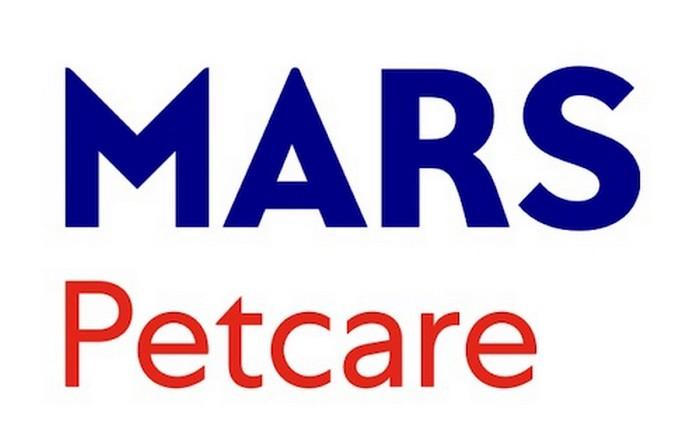 Market Information
Market Information
1+ MIN
22/08/2023
Mars to acquire SYNLAB Vet, European veterinary reference laboratory
Mars, Incorporated ('Mars') today announced that it has entered into an agreement to acquire the assets of SYNLAB Vet, a European provider of specialist veterinary laboratory diagnostics, from SYNLAB Group (FSE: SYAB). Upon transaction close, SYNLAB Vet will join Mars Petcare, a purpose-driven global business serving pets and pet owners through products and services across veterinary health and diagnostics, nutrition, innovation and technology. This acquisition will enable the Science & Diagnostics division of Mars Petcare to expand its veterinary laboratory business in Europe in addition to its full-service global veterinary diagnostic offerings across veterinary labs, point-of-care, imaging and software. Nefertiti Greene, President, Mars Science & Diagnostics said: 'We look forward to welcoming SYNLAB Vet to the Mars Petcare family of businesses. We share the belief that excellence in veterinary diagnostics and advanced technology is transformative for veterinary care.' Nef added: 'This transaction is complementary to our existing diagnostics business and will bring additional reach across Europe and further our purpose to create A BETTER WORLD FOR PETS™.' by Mars
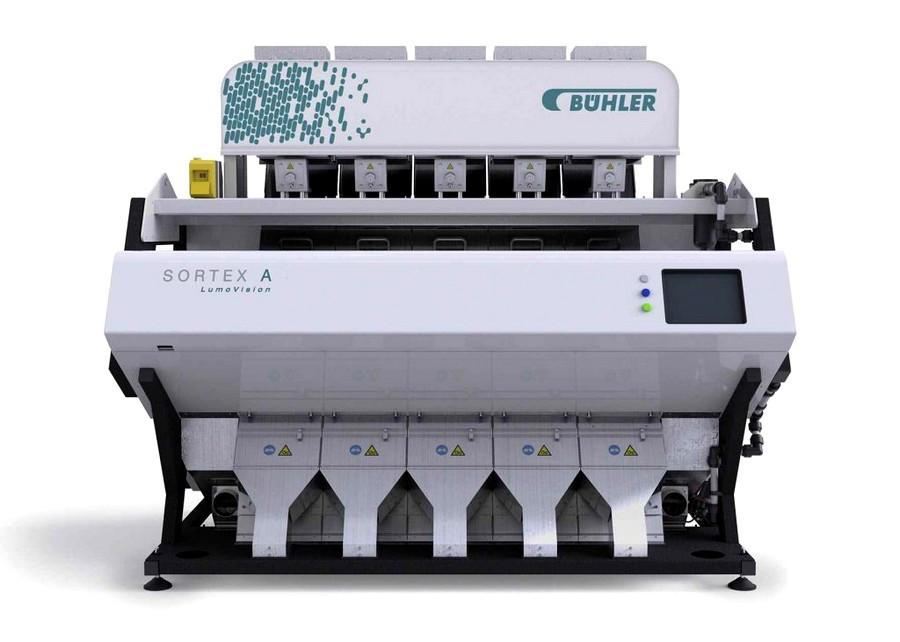 Laboratory
Laboratory
3+ MIN
17/08/2023
Bühler offers solution to reduce mycotoxin levels in pet food
Mycotoxins, a poisonous chemical found in the corn used in pet foods, are causing animal sickness and irreparable brand damage. To solve this issue, SORTEX LumoVision, a solution developed by Swiss technology group Bühler, uses the spectral scale to kick out mold from pet food, keeping the costs of market recall down and pets safe. In 2021, the FDA (Food and Drug Administration) alerted customers of fatal levels of aflatoxin, a strand of mycotoxin that attacks the liver, found in 1,000 lots of pet food. From the bad batch, it is reported that 130 dogs died. This statistic provoked lawsuits and anger from dog owners and the wider industry. However, the damage of mycotoxin contamination does not stop there. RECALLING PRODUCT IS EXPENSIVE One of the major costs of mycotoxin contamination is market recall. Recalling a product from the market is not cheap, in fact, the Grocery Manufacturers Association (GMA) discovered that the average cost of market recall is USD10 million in direct costs alone. The financial hits of recalling product include: disposing of the product, reimbursing customers, and business interruption. The GMA survey showed that 81% of respondents deemed the financial risk of market recall to be 'significant to catastrophic'. CONTAMINATED PRODUCT DAMAGES BRAND IMAGE Financial costs and damage to health are not the only repercussions of mycotoxin contamination. Once the media are aware of the situation, brand image can take a significant hit. For consumers, it takes a lot to repair trust in a brand, and while brand damage is difficult to measure, this can further cost companies millions in lifetime value. CONTAMINATED PRODUCT CAN CAUSE MASS WASTE Before the LumoVision, contaminated grain would have been disposed of in large amounts. During testing, if the batch has a high concentration of mycotoxin, in many cases, the entire batch is destroyed. In fact, as few as 2 highly contaminated grains in 10,000 can render an entire batch unsafe. The Food and Drug Association (FDA) estimate that USD932 million is lost per year to crops contaminated with mycotoxin. This removal of the contaminated material may protect the consumer, but it costs businesses and the environment a lot more. WHAT CAN BE DONE? Bühler SORTEX faced the challenge of mycotoxin contamination head-on. After discovering a breakthrough 'invisible indicator' of contamination on the spectral scale, Bühler created the LumoVision, an optical sorter that can reduce the aflatoxin level by up to 90% (as indicated by industrial trials). This reduction brings many samples to regulation levels, saving companies from the costs of large-scale material waste and market recall. It works by analysing the colour each kernel fluoresces as it passes under powerful UV lighting in the sorter. It is known that contaminated kernels fluoresce a specific bright green colour, a substance called kojic acid, which is produced by the Aspergillus fungus at the same time as it produces aflatoxin. LumoVision's proprietary, highly sensitive cameras and a powerful LED-based UV lighting system can precisely detect this colour of fluorescence. Within milliseconds of detection, air nozzles deploy to blow contaminated kernels out of the product stream. When dealing with toxins, early intervention is critical. This is not only important in reducing the toxins consumed by pets, but also to lower wastage and the environmental footprint. Without proper cleaning and sorting, poisonous mycotoxins can cause large-scale wastage of materials, mass market recalls, and harm to pets. Dr Gerardo Morantes, Director of Food Safety-Americas Region at Buhler, had the following to say: 'Mycotoxins are a worldwide concern. However, technology made possible by Bühler SORTEX enables a preventative solution, meaning that mycotoxins can be dealt with early, stopping the spread and removing the contamination to meet regulatory standards.' Without intervention, mycotoxin contamination can bare a large cost for businesses, including, brand reputation, market recalls and material waste. With the SORTEX LumoVision, brands can stay profitable, customers can stay happy and pets can stay safe. By Bühler Group
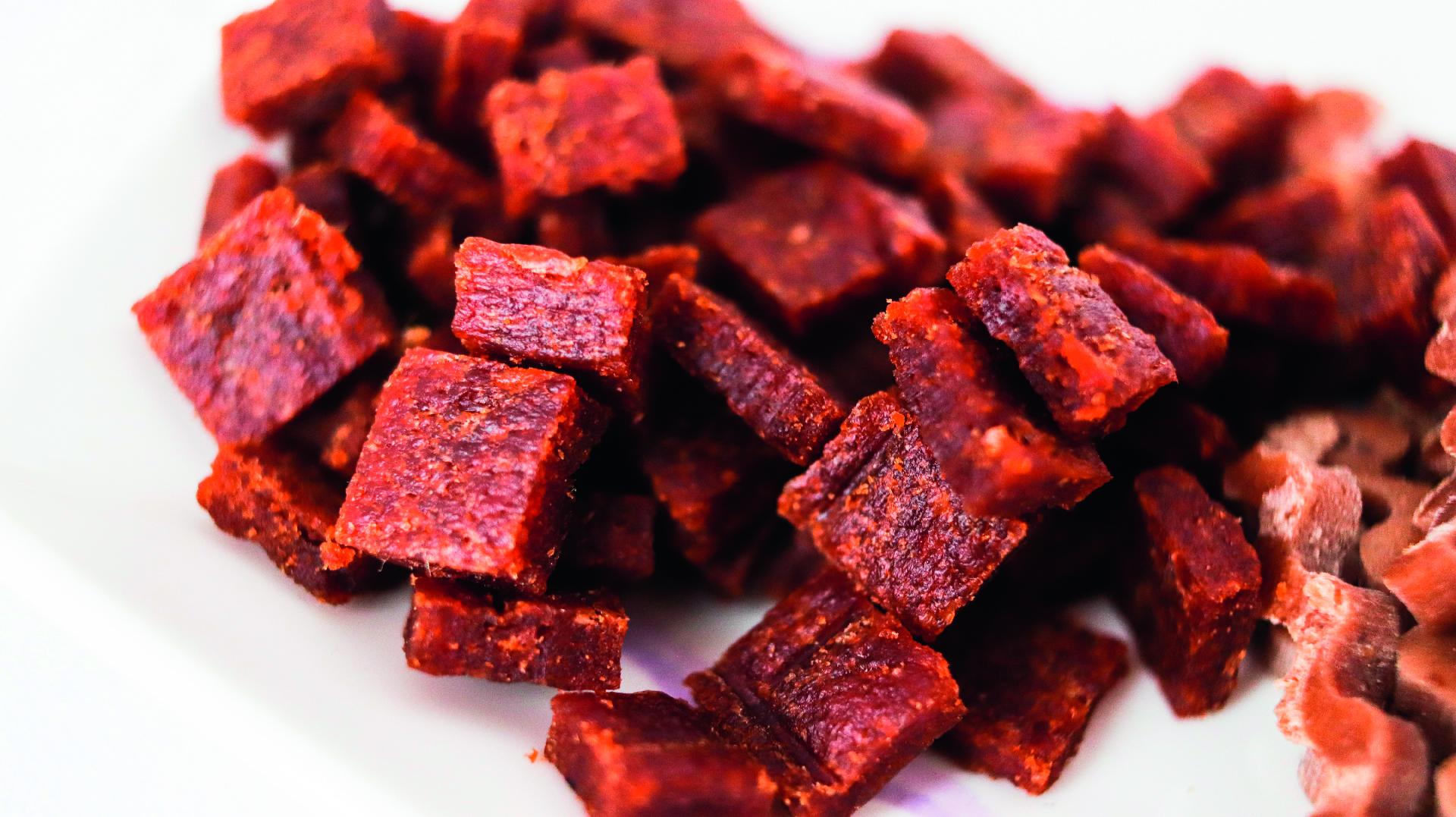 Extrusion
Extrusion
4+ MIN
16/08/2023
Por María Candelaria Carbajo
Chain process, constant improvement: extrusion, binders, palatability, and more
Precision, a key factor in extrusion Extrusion occupies a central place in pet food production, but it is not the only thing that matters: it does not make sense to focus exclusively on it if accurate and integral material and ingredient management is not achieved throughout the whole production process. Being the most common method of producing dry pet food, it involves several operations, such as mixing, heating, kneading, cutting, and shaping. Here the key is to obtain perfect homogeneous mixtures of the ingredients used in the formula. Some criteria for an effective and successful process Nutrition and extrusion Nutritional quality is the main point, which is obvious but impossible to forget. The first and most important thing in a pet food formula must be nutrition, so the final product, regardless of the chosen production process, must be complete and balanced. With this in mind, one must consider how the selected ingredients react in the extrusion process. Depending on its nature, this can be easy or rather challenging. Secondly, we can talk about product uniformity and texture. To pets, consumers and judges of our offers, product palatability is crucial, as no nutrient can nourish without good palatability. Additives and binders We can also mention additives as one more component of pet food formulas that can have various purposes. Some can be: guaranteeing longevity and food safety, maintaining texture and color, and preventing water activity, ingredient deterioration, and oxidation, among others. In addition, they are specially used to increase palatability and flavor, an important sensory characteristic for both dogs and cats. In fact, it's what defines whether or not the pet chooses our food. These can impact first-choice palatability, which means they make it the first food chosen or achieve a continuous choice effect, a preference sustained over time. These types of ingredients added to formulas are widely used. However, that does not exempt them from being controversial in a context in which those who make purchasing decisions prefer to know all the ingredients that their pet food contains and where this type of addition is increasingly rejected, often due to ignorance. Marketing and sustainability For the last couple of years, there are two additional points gaining more and more ground: marketing and sustainability. On the one hand, marketing is a crucial tool to get our product, with a great process and palatability, to reach the right hungry mouths. To design a great product to remain stored in our warehouses is completely pointless. And, on the other hand, considering (or not) the environmental impact can be, nowadays, one of the factors that take off or bury a brand's name. Today's consumers want to buy what takes care of everyone's future. Different factors, some products, only one goal Producers are deepening their research and experimentation to answer with the best possible quality to new market demands. Currently, we can summarize these needs in the following most significant challenges: Fresh refrigerated meat, neither frozen or dehydrated Higher quality – use of mechanically deboned skeletal muscle and primary organs, not by-products Unadulterated materials Non-traditional, grain-free, or alternative ingredient formulas More food shapes, like croutons or bone shapes, and not just brown and round Higher rates of meat inclusion (30-75%) The truth is, with every new trend, new challenges arise. The greater inclusion of meat, for example, presents, from a manufacturing point of view, a challenge in terms of extrusion. But no matter how big the hurdle, staying on top of trends and meeting customer expectations is most important. Conclusion The improvement of production practices and, consequently, of the characteristics of final products depends on the processes chosen and the ingredients used. A crucial point, within a sea of innovative technology, attractive proposals, and emerging raw materials, is to remember, depending on the type of food produced, and determine what nutritional benefit we seek to achieve, either in a final product or with the addition of certain additional components. As an industry, we must have the ability to review and attack challenges from all angles, and for successful development, we already know the keyword: innovation. Looking carefully at the path traveled in recent times, we do not doubt that experts from various areas are working to improve and overcome any obstacles in terms of formulation requirements, hardware development, process controls, and specifications of a final product, with the objectives in mind of increasing productivity, minimizing costs, successfully satisfying our customers, maintaining the highest quality standards, eliminating human error, improving efficiency and optimizing security. Source: All Pet Food Magazine
 Formulation
Formulation
3+ MIN
15/08/2023
Tapping Into China's Pet Food Market: Opportunities For Success
As she has so much experience in the pet food industry, we asked her to share some valuable insights into the current state and future prospects of the Chinese pet food market. China's pet food market has seen significant growth over the past few years, driven by the rising number of pet owners who prioritize the health and well-being of their furry companions. The market continues to evolve, which means there are ample opportunities for pet food companies to tap into this growing demand and establish a strong presence. A psychological portrait of a Chinese pet owner The majority of pet owners in China are young, with limited experience in pet care. That's why they rely heavily on online platforms for pet-related information and advice from veterinarians. Pet health is a top priority for these owners, as they know that a well-balanced and nutritious diet is vital for their pet's overall well-being. Pet food manufacturers that supply high-quality raw materials, accompanied by clear functional claims and authoritative verification reports, are most likely to stand out in this growing market. One crucial factor to consider is the growing population of senior pets in China. In most cases, this is a new and unfamiliar situation for many pet owners, as this is the first time they are going through such moments. Therefore, brands entering the market should focus on addressing crucial factors like pet emotional health, cognition, and specific issues related to aging. By addressing these needs, brands can establish a strong position and build trust among pet owners. Advice for Western brands entering the Chinese market For Western brands looking to work with Chinese pet food manufacturers, understanding the cultural nuances, the needs of pets, and the preferences of Chinese consumers is essential. A Chinese end-user, especially one who prefers to buy premium food and treats, wants to see a European touch on the product. It's important to mention this on the package, point of sales, and in their marketing campaign. This will undoubtedly build trust, help increase product recognition, and will make the product more liked among buyers. The future of the Chinese pet food market As said, the Chinese pet food market is experiencing rapid growth, along with various complexities and opportunities. The pet food industry in China offers an abundance of products with diverse claims and formulations, addressing the needs of pet owners of different ages, from various cities. Online transactions play a significant role in this market too, opening up new avenues for exploration and expansion. Cats are expected to dominate the pet population growth in China, particularly among young women who are conscious of their pets' health and nutrition. Streamlining product claims and using professional design elements will help pet owners save time in choosing pet food. At the same time, this will also allow them to spend more quality time with their pets and enrich their overall pet-owning experience. Aker BioMarine's collaboration with Chinese pet food brands Aker BioMarine, the biotechnology company behind the QRILL Pet products, has been committed to having a local presence in China since 2011, recognizing it as the world's largest market for marine ingredients. In recent years, Aker BioMarine has been collaborating with leading pet food producers in China, establishing krill as a premium pet food ingredient in the country. These partnerships focus on customizing raw materials, sharing best practices, and promoting the development of pet health food through scientific research, technology, and consumer insights. In conclusion Understanding the preferences and expectations of Chinese consumers, as well as the evolving pet ownership trends will be critical for success in these coming years. By collaborating with local partners and offering high-quality, innovative pet food products, brands can tap into the growing love and concern for pets in China.Focusing on health, nutrition, and sustainability, the future of the Chinese pet food market is bright for both manufacturers and pet owners. by Suha Zhou - Sales Director QRILL Pet China
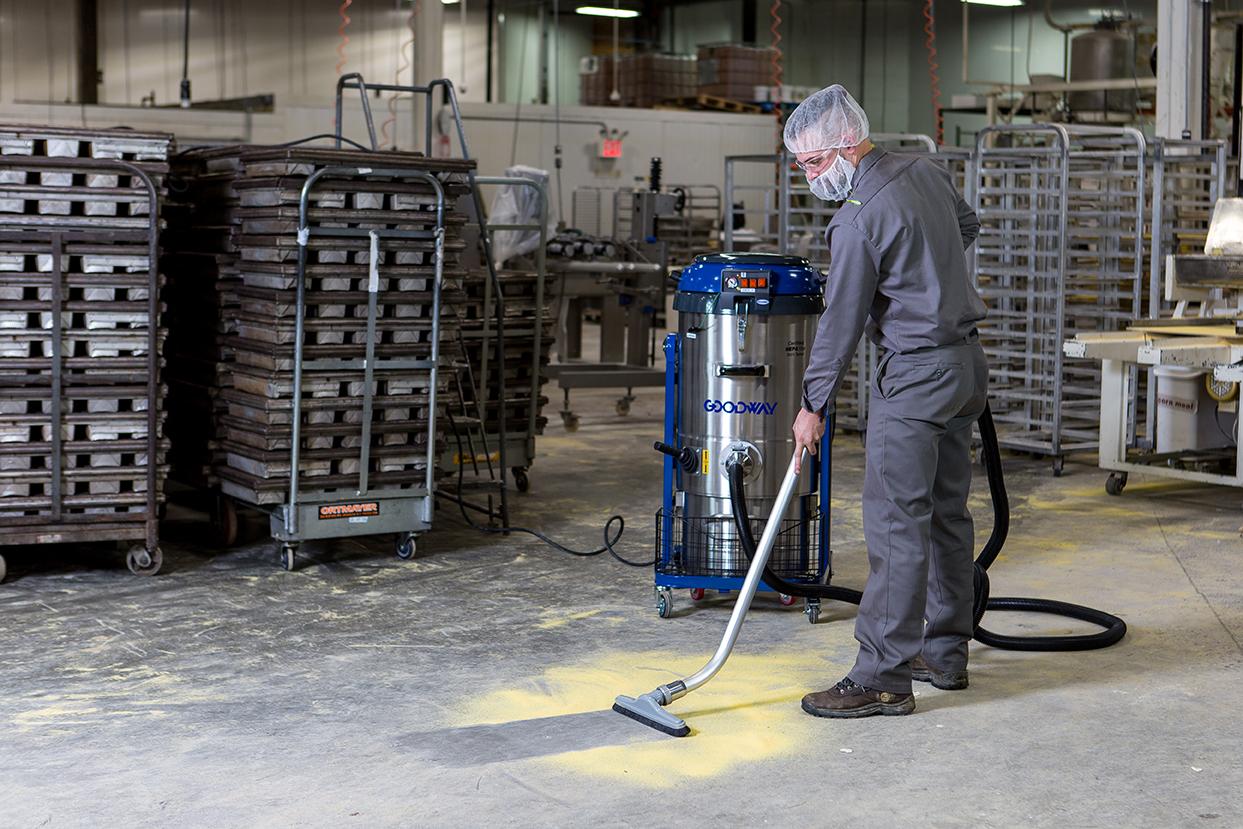 Manufacturing Process
Manufacturing Process
4+ MIN
14/08/2023
Understanding Explosion-Proof Vacuums: What Sets Them Apart?
Not all industrial vacuums are explosion-proof. Only an industrial vacuum certified as explosion-proof is designed to prevent and contain explosions in potentially hazardous environments. It is vital to know how explosion-proof vacuums differ from other industrial vacuum designs. Knowing these things will help you select the right vacuum for your application, whether the vacuum will be used in a chemical, pharmaceutical, food processing, or manufacturing plant. How Do Explosion-Proof Vacuums Differ From Other Industrial Vacuums? Both industrial vacuums and explosion-proof vacuums can be used for industrial purposes. But only explosion-proof vacuums can be used for potentially hazardous environments. Industrial vacuums have unique features and components to operate in industrial environments safely. But explosion-proof vacuums have the following features besides those found on most industrial vacuums: Explosion-proof motors are sealed to prevent sparks and constructed out of materials that can withstand high temperatures and pressures. Grounding and bonding systems prevent the buildup of static electricity, which can cause sparks and trigger an explosion. Hoses and accessories are made of conductive materials that prevent static electricity buildup. Explosion-proof filters are designed to contain combustible materials and prevent sparks. Explosion-proof vacuums are also certified to specific safety standards through Underwriters Laboratories (UL), CSA Group, and ATEX. A vacuum with these certifications meets exacting safety standards for safe use in potentially hazardous environments. What are Explosion-Proof Vacuums Used For? Prevention of fire and dust explosions is a serious concern in various facilities. Industrial environments are often at risk for combustible dust explosions, especially in the chemical, pharmaceutical, food processing or manufacturing industries. Dust explosions can kill workers and destroy facilities. The Imperial Sugar Company had a dust explosion in 2008 that resulted in 14 deaths and dozens of injuries. The tragedy drew attention to the destruction possible when combustible dust builds up. Most industrial dusts are dangerous, whether it is flour or sugar dust generated in food processing or chemical dust produced during manufacturing. It's vital for maintenance technicians and building operations managers to inspect for dust buildup regularly, clean equipment at regular intervals, move dust collections outside, and use only vacuum cleaners approved for dust collection in hazardous environments. Explosion-proof vacuum systems clean up explosive or flammable materials safely without causing hazardous materials or dust to ignite or explode. They are commonly used in industrial settings with chemicals, combustible dust, or other hazardous materials present. Keeping things clean, controlling ignition sources, and performing regular preventive maintenance are important steps to reduce the risk of dust explosions. But it is equally vital to inform and train all employees working in the area about the safety risks of combustible dust, hazardous chemicals, and other flammable materials. All personnel have a role to play in mitigating explosion risks. Maintenance personnel need training in the proper use and maintenance of equipment. Managers must be ready to enforce safety policies and procedures. Safety personnel must understand the potential dangers of crafting sound safety policies and procedures. Keeping a plant safe from these hazards is everyone's responsibility. What Facilities Need an Explosion-Proof Vacuum? Many facilities need an explosion-proof vacuum. Some common applications include: Food processing plants where dust and other combustible materials are present. Chemical and pharmaceutical plants that handle hazardous materials. Manufacturing plants that use chemicals and substances in the manufacturing process. Refineries and oil rigs which deal with flammable gases, liquids, and other hazardous substances. Laboratories that use chemicals, solvents, or other flammable substances. Different Uses and Applications for Explosion-Proof Vacuums The applications for explosion-proof vacuums are as diverse as the industries that use them. In a food processing facility, these vacuums may clean accumulated dust from food processing equipment, such as mixers, grinders and conveyors. These vacuum systems also can clean plant floors and surfaces, as well as storage and packaging areas. At a pharmaceutical or chemical plant, an explosion-proof vacuum can remove powder and dust from production areas and equipment and clean lab areas where hazardous materials generate dust and debris. In chemical plants, these vacuums can safely remove dust and debris from reactors and vessels used to mix and store chemicals. Manufacturing plants and classified environments alike can use explosion-proof vacuums to clean production equipment, such as lathes, mills and grinders, which accumulate dust and debris during production, even in hidden areas. They also can clean plant floors and surfaces, storage locations, and shipping and receiving areas. In oil refineries and on oil rigs, explosion-proof vacuums can remove dust and debris from heavy machinery and equipment. The vacuum systems can also clean facility floors and surfaces. Laboratories use explosion-proof vacuums to remove hazardous materials, chemicals, and powders. This includes cleaning lab equipment such as fume hoods, biosafety cabinets, and cleanrooms which can accumulate hazardous materials or dust during experiments or testing. The vacuums can also clean lab floors and surfaces, as well as chemical storage and hazardous waste areas. Next Steps Goodway Technologies offers a complete line of explosion-proof industrial vacuums to pick up hazardous dust and other materials with various chamber and tank sizes. These vacuums are certified by various organizations and are available in wet capacity and dry capacity explosion-proof configurations. Both electric and air-powered models are available. Vacuums with HEPA filtration are available. Vacuums designed for heavy-duty applications are available. Goodway's in-house experts can visit your facility to assess your equipment and determine which explosion-proof vacuum will deliver the best results for the application. By: Goodway Tech
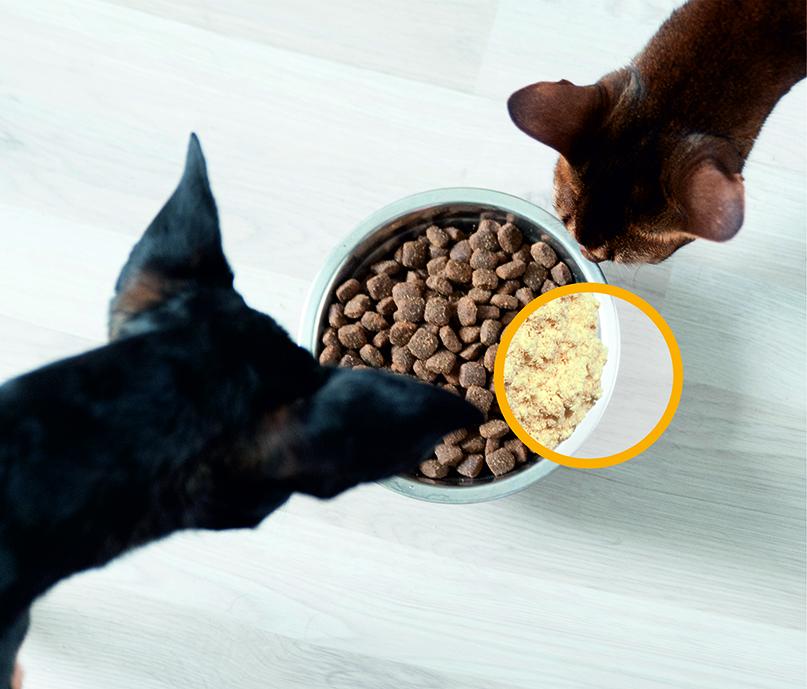 Ingredients
Ingredients
3+ MIN
11/08/2023
Functionality beyond nutrition
Fibers as natural and renewable plant-based materials are ecological products at their best. Because of their multifunctional properties and compatibility with nearly all other substances, fibers provide solutions for many everyday products. The selection of the right raw material and the mechanical manufacturing process is of paramount importance, as this allows the particle size and structure to be tailored, and the properties of the fibers depend, to a large extent, on these parameters. Through a finely tuned interaction of suitable milling technology and fractionation, optimized products can be manufactured. ADVANCED MILLING TECHNOLOGY An impact mill acts on a fiber material with high shear forces. This results in strong fibrillation of the material, resulting predominantly in long, thin fibers (picture 1). In turn, these are characterized by a high binding capacity for liquids, be they water, oil, or others. In contrast, a cutting mill mainly shortens the fiber length but is not able to split fiber bundles into individual fibers very well. Therefore, this grinding system mainly produces shorter particles with a less pronounced fiber structure (Picture 2). These particles are less effective but have a better flow, dosing, and mixing ability. Picture 1: Long Fiber Picture 2: Short Fiber Other so-called 'rotor-stator systems,' which allow a very small grinding gap, are predestined for fine powder production. Although these powders do not have high functionality, they can be used in higher concentrations and can be easily and homogeneously incorporated into a wide variety of formulations. They also have good sensory properties. APPLIED KNOWLEDGE Having the possibility to understand how a structure or matrix of the fiber after a dedicated processing upgrade looks like is an innovative competitive advantage. Structural differences of various fibers can help to indicate certain functional properties, which are sometimes known in the industry but more often not known or not deep enough explored. This is the moment where scientific transparency meets technical application, researching the functional benefit of a new potential product in a real application like in main meals or snacks. For that, JRS has set up a pilot facility in 2017 where exactly this kind of internal research is happening. Only after enough internal trials and critical analysis, the products are manufactured on a larger scale to run first trials with dedicated customers. By doing that, it is possible to develop real innovative product concepts, which are new to the market before they become standard across the pet food world. Globally, there are thousands of innovation pipelines and marketing concepts creating a high demand for new innovative solutions. Having the right knowledge and products in place is key to being a constant part of new product developments and strategic partnerships. However, even in daily production, there are challenges where fiber can help to have a more efficient production. Some of them have the capability to generate a network, helping to keep the shape of a product intact or keeping a gravy clear during sterilization. Others can avoid syneresis in raw meat food or alternatively in all meat sausages, ensuring water excess can be held over shelf life. There are many more examples of what fiber can deliver beyond the nutritional benefit for pets. Fibers designed by nature in combination with research & development plus technical application knowledge are the future road for many new ideas around the globe beyond nutrition. By: JRS Source: All Pet Food Magazine
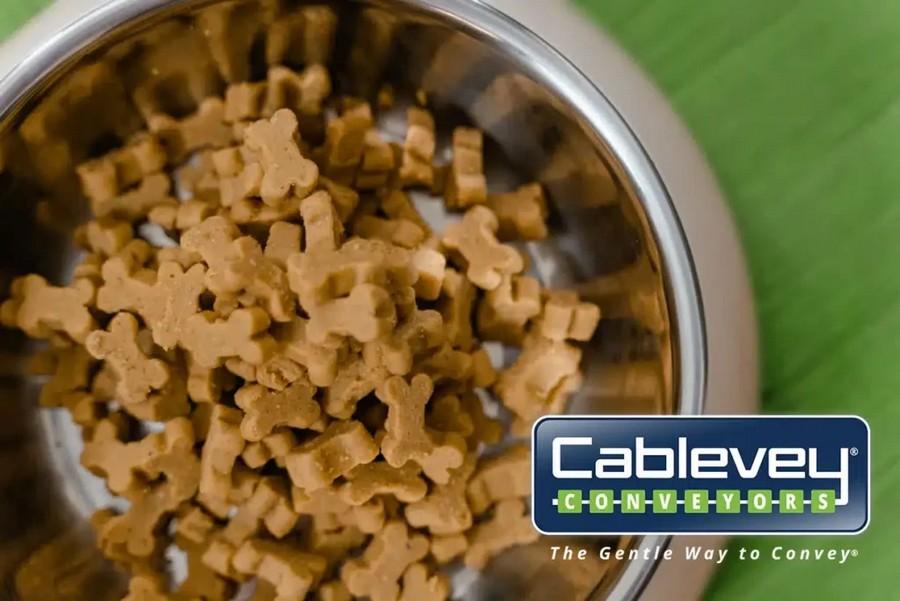 Conveying Systems
Conveying Systems
3+ MIN
10/08/2023
Pet Food Industry Trends for 2023
Growth is a great opportunity, but it also requires planning when it comes to how pet foods are conveyed in your facility. How are companies preparing to handle this type of growth at their processing facilities?
In October 2022, Cablevey Conveyors commissioned the independent research firm, Ascend2, to conduct a research study titled Evaluating and Implementing New Conveyor Systems. The 16-page study (download for free) asked 290 food processing professionals in the United States and the United Kingdom to provide their insight on critical considerations when evaluating conveyor systems.
In this article, we will review and analyze the findings from 72 food processing professionals that are conveying pet food. What are they doing to prepare for growth?
Finding #1: Budgeting for Growth.
85% of facilities processing pet foods are increasing their budget for conveying equipment and maintenance in the next 12 months. 35% tell us that they are increasing significantly the budget needed to meet growth opportunities. Why the increase in the budget? The increase is in response to how much these businesses grew in the past year.
Finding #2: Can your workspaces facilitate needed growth?
An important consideration of growth is your workspaces and facility requirements. What conveying systems are best for the space that you have available?
According to the pet food processing experts surveyed, the #1 conveying system (46%) for maximizing available space is cable and disk conveyors. What are a few questions should you ask when evaluating the right conveyor system to optimize the space at your facility?
Do you have enough floor space or ceiling height to accommodate certain conveyor types? Does the layout of the conveying system take into account easy access for cleaning and maintenance, worker safety, and operational performance? Here is a short video that shows a pet food conveying layout.
Finding #3: Consider maintenance and downtime when you plan.
For pet food, what conveying systems are the most efficient? Cable and disc conveyors lead the pack (by a wide margin) at 54%
What are a few questions should you ask when evaluating the right conveyor system when it comes to maintenance and downtime?
Questions to ask:
How much time will be spent disassembling and cleaning the system? Will maintenance and downtime costs exceed any savings that you realized when purchasing the system?
Finding #4: Don't forget energy efficiency.
What contributes to energy efficiency? The size of the motor and the amount of horsepower required to run a conveying system can have a major impact on production costs. What conveying systems is the most energy efficient for pet foods? Cable and disc conveyors are #1 at 44%.
Here are two questions to ask regarding energy and efficiency:
How much energy will this system use?
Is there a high or a low cut-off point at which this system becomes inefficient?
Conclusion
The pet food industry is growing and evolving. This research study provides insight into the specifics of how industry professionals are preparing for that growth and making the best decisions for their facilities.
The research points to cable and disc conveyors as the superior solution for pet foods. Tubular conveyors help streamline pet food processing and maintain both quality and proper proportions in nutritional mixes, snack foods, and other pet food products, product characteristics important to pet food purchasers.
To find out if a Cablevey system is the best solution for conveying your pet food, have the Cablevey Testing Center perform a free test for you. The Testing Center will provide you with the data to help you make the most informed decision for your specific need.
This article only covers a portion of the finding from the Ascend2 research study. Download Evaluating and Implementing New Conveyor Systems for more insight into the food processing industry.
by Cablevey Conveyor
 Formulation
Formulation
3+ MIN
09/08/2023
Por Ludmila Barbi T. Bomcompagni
Challenges for the canine and feline nutritionist and pet food formulator for the upcoming years
Proper nutrition: The main challenge when formulating and developing products for the pet food market is ensuring proper pet nutrition. Each species has specific nutritional requirements, and products must be formulated to fulfill them. In addition, we have to consider factors such as age, size, breed, and individual health conditions. Formulating nutritionists must ensure that products are balanced and meet all necessary nutritional requirements. Knowing the ingredients in depth: Finding and using quality ingredients is another challenge facing pet food developers. It is important to ensure that the ingredients used are safe, healthy, and meet regulatory standards. Knowing the nutritional composition of each raw material, the digestibility of the ingredients for each species, and thinking about the interactions between nutrients during the digestive process of animals should also be questioned by the formulating nutritionist. Not only do the points mentioned above matter, but the choice of ingredients must also be very well thought out since it must comply with the minimum cost proposed for the formula, the availability of purchase considering the seasonality of each raw material, and the possible fluctuations in the availability in the market. In addition, some tutors are increasingly concerned with the origin of the ingredients, so their choice must also be guided by the product market positioning of the product that the nutritionist is formulating. Finding reliable suppliers and establishing long-term partnerships is essential to ensure the consistency and quality of the ingredients used in pet foods. Understanding additives, their functions, and purposes: The industry of additives for animal nutrition is constantly evolving thanks to the development of new products and technologies. A pet food formulator must keep up with these updates and advances in the field of additives to optimize pet food formulations and deliver high-quality products. Some additives are used as preservatives to extend the shelf life of pet foods. A pet food formulator must understand how these additives work, as well as the proper dosages to ensure food safety and good shelf life. Palatability: Pet food can be nutritionally balanced, but if it is not appetizing and acceptable to pets, it will be rejected by guardians and the animals themselves. Palatability is a major challenge when formulating new products. Pets have individual preferences, and their tastes may vary. Companies and their development teams must invest in extensive research and testing to ensure that their products are tasty and attractive to animals, while also meeting nutritional needs. Processing considerations: Pet food processing is an additional technical challenge. It is necessary to ensure that food is manufactured consistently, maintaining the integrity of ingredients and preserving essential nutrients. The pet food formulator must know the extrusion processes and their pre- and post-processing, as so many parameters can affect product quality, such as grinding, time/temperature inside the extrusion barrel, shear, friction, density, dried, and covered. Extrusion is one of the types of processing that the formulator must master, but the dynamics of product diversification for this market require that these professionals learn about new forms of processing, such as autoclaving, dehydration, freeze-drying, and other innovations that may arise. Innovation and market trends: The pet food market is constantly evolving, driven by trends and consumer demands. Product developers must be aware of the latest trends and innovations in the industry, which includes the development of specialized products for specific needs, such as food for pets with food allergies, diets for weight loss, and organic and natural foods, among others. Keeping up with these trends and innovations requires continuous market research and flexibility to adapt to changes. The pet food market presents significant challenges for formulators and product developers. Proper nutrition, choice of quality ingredients, palatability, processing considerations, and innovation is critical to success in today's marketplace. With so many challenges, a pet food formulator must be a multi-faceted professional. The association and collaboration between the pet food nutritionist, researchers, and alliances between public and private institutions are important for the training of these professionals. They also promote science and technology for this market and to overcome these challenges, develop healthy and attractive food for pets, ensuring the health, and longevity of pets and owners' satisfaction. By: Ludmila Barbi T. Bomcompagni and Erika Stasieniuk Source: All Pet Food Magazine
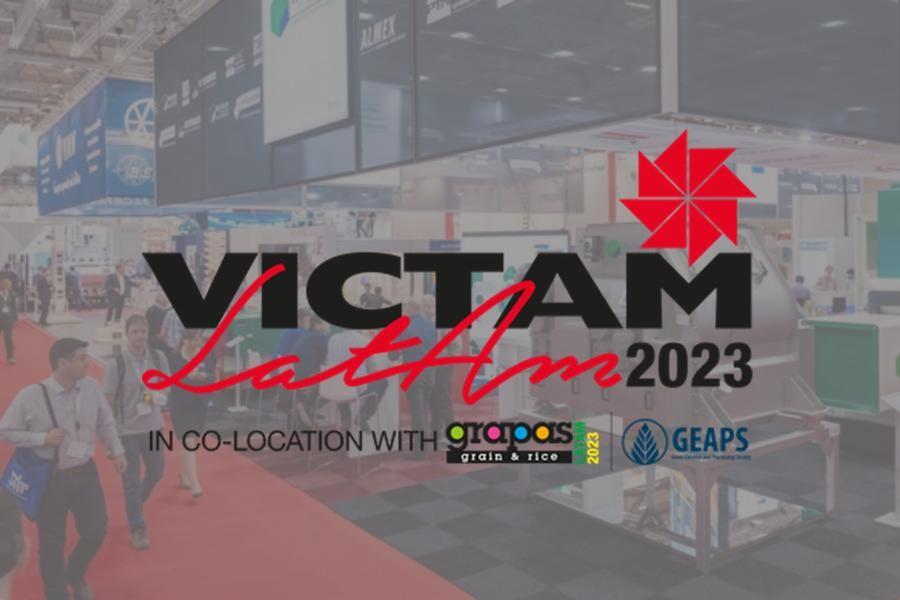 Market Information
Market Information
1+ MIN
08/08/2023
VICTAM LatAm 2023
The VICTAM events are by far the world's largest dedicated events for the animal feed processing industries. With VICTAM LatAm, now VICTAM also has its Latin American platform, where the focus will be on the opportunities in Brazil and its surrounding countries. As in other parts of the world VICTAM will be launched in paralel to GRAPAS LatAm, the event for grain, rice, soy and flour milling and processing. Above this, in Latin America VICTAM partners with the North American grain processing and handling association GEAPS, who launches its event GEAPS in co-location with VICTAM and GRAPAS. Together the three events are the place to be for feed and grain processing and handling. The exhibition is a 'one-stop' show for the decision-makers within these industries. Each visitor will be able to find what they are looking for, all under one roof over three days. The event also focuses on a series of high-quality industry conferences and business matchmaking with colleagues and clients. Why attend VICTAM LatAm 2023? Access to the exhibition of your industry. See the latest developments in your industry Specific conferences with key topics in line with your interests Networking Matchmaking and/or business opportunities We invite you to register to be part of this event: https://victamlatam.com/en-us/visiting/registrations by: All Pet Food
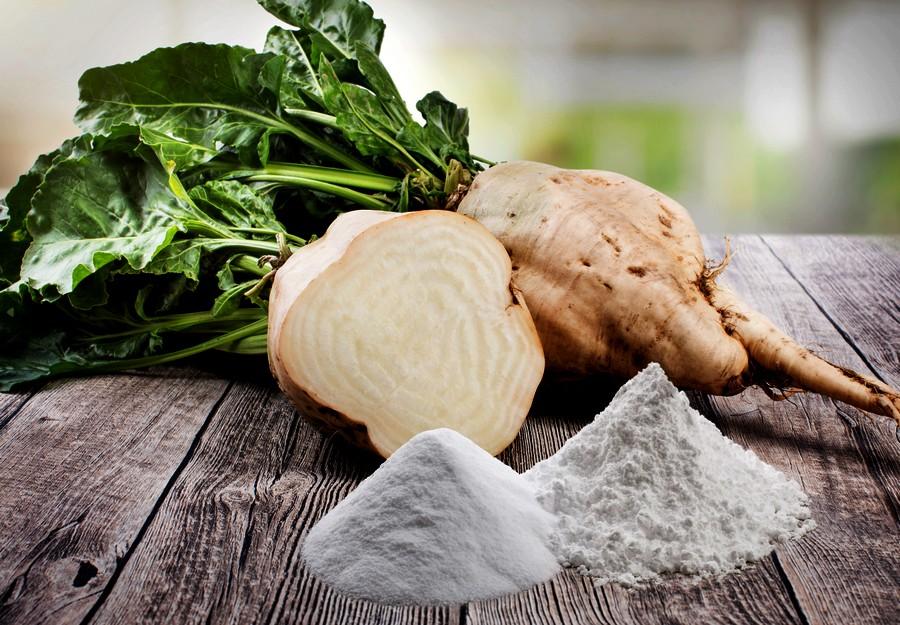 Formulation
Formulation
3+ MIN
07/08/2023
Low Glycaemic Properties of Isomaltulose Confirmed in Dogs
The study results demonstrate that isomaltulose is a suitable low glycaemic ingredient for use in dog food, triggering a lower blood glucose rise after consumption. This property makes it a particularly interesting solution with the potential to support metabolic health and weight management. Numbers of overweight and obese dogs have steadily increased over the last few decades and exceed 50% in Western countries. Excessive weight is linked to metabolic and skeletal associated disorders and impacts the quality of life of both dog and owner. This is reflected in pet owners' interest in tackling such issues: More than 8 in 10 pet owners worldwide agree that on-pack communication about helping to control their pet's weight naturally (87%), or having a lower impact on blood sugar levels (85%), very much or somewhat affects their purchase intention of a pet food product. Here, nutrient choice has an important role to play, especially in regards to which carbohydrate is used in a dog's food. Firstly, because overweight or obese pets are at risk of developing impaired glucose tolerance and insulin resistance. Secondly, low glycaemic diets have been shown to support weight loss and improve metabolic health in both humans and dogs . Therefore, finding suitable low glycaemic ingredients for dog food is key. In total, three studies were carried out by the teams from universities in Utrecht and Wageningen. The first, an in-vitro study of small intestinal tissue samples from three dogs, evaluated the small intestinal hydrolysis of isomaltulose compared to sucrose, maltose, maltodextrin, lactose and ɑ-trehalose. The aim was to confirm if dogs have the ability to digest isomaltulose, as well as compare it with other carbohydrate sources. The findings showed that it can be digested by canine intestinal enzymes, with a lower enzyme activity compared to high glycaemic carbohydrates, indicating a slower rate of hydrolysis. The second and third studies compared the effects of isomaltulose, sucrose and maltodextrin in an in-vivo set-up. One of the studies assessed the glycaemic effects of the three carbohydrates in nine dogs and using a 3x3 Latin-square design . After an overnight fast, the blood glycaemia and insulinaemia were measured 0-180 minutes after the administration of a single dose of either isomaltulose, sucrose or maltodextrin. The results showed that isomaltulose significantly lowered blood glucose and insulin responses in the dogs, compared to maltodextrin or sucrose. The goal of the final study was to assess the glycaemic properties of isomaltulose in dogs, after continuous intake. This was based on the assumption that the abilities to digest isomaltulose might evolve through adaptation, so that its impact on blood glucose levels would get closer to the other carbohydrates. In this study, 18 dogs received a 50:50 mix of isomaltulose and sucrose (1g per kg bodyweight) daily for two weeks. They were then split into three equal groups which each received a single dose of either isomaltulose, sucrose or maltodextrin after an overnight fast. Following this, the dogs' blood glucose and insulin responses were measured. Even after continuous intake over two weeks, the low glycaemic and insulinaemic properties of isomaltulose were confirmed. Commenting on the findings, Dr Maygane Ronsmans, Product Manager Animal Nutrition at BENEO says: 'This research is of great importance as it offers the first comprehensive characterisation of isomaltulose with respect to its digestibility and metabolic effects in dogs. The low glycaemic properties of isomaltulose already shown in other species, including humans, pigs and rodents, have now been confirmed in dogs. The combined results of this study suggest that isomaltulose would be a suitable energy source in dog food, which contributes to a more stable blood glucose response, and may improve the dog's metabolic profile and overall health.' Isomaltulose is a disaccharide which occurs naturally in honey. It is composed of glucose and fructose, characterised by a stronger glycosidic bond than that of usual sugar. Isomaltulose is a direct source of energy that generates a more balanced blood glucose response, distinguishing it from high glycaemic energy sources, such as heat treated cereals and conventional sugars (e.g., dextrose). BENEO derives isomaltulose from sugar beet at its production plant for functional carbohydrates in Offstein, Germany. by BENEO-Animal Nutrition For further information on BENEO and its ingredients, please visit: www.beneo.com
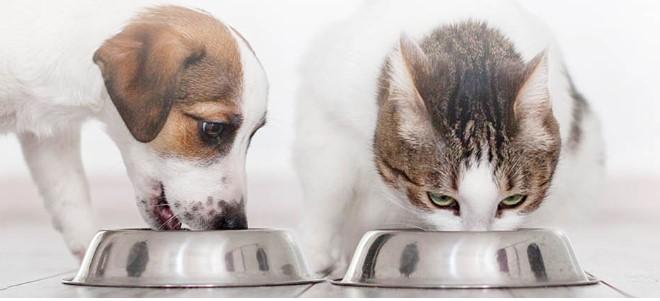 Animal Origin
Animal Origin
3+ MIN
03/08/2023
NARA -Animal Nutrition
Because North American renderers process at optimum temperatures over a prescribed length of time and they use strict quality control measures, animal protein meals are consistently high quality, uniform, stable, affordable, and nutritionally dense. The materials renderers provide allow for more sustainable pet food sourcing while producing high-quality meals for animals. Rendering practices are vital for sustainable and well-balanced pet food nutrition. Ingredients in Pet Food Pet food uses a wide range of ingredients that renderers can process from waste products. As a result, when excess materials from meats are removed during processing, they can go toward pet food nutrition. There are several critical nutrients that pets need to stay healthy, such as proteins, minerals, vitamins, and carbohydrates, and animal nutrition research demonstrates that rendering can have a vital role in meeting this need. Key ingredients that come from rendering include: Meat and bone meal. Animal proteins. Animal fats. These substances can serve as crucial nutrients for pets' health and daily dietary needs. The ingredients may include human-grade food and other materials deemed safe for animal consumption. Dogs and cats of different breeds and sizes have various nutritional needs and may eat wet and canned foods, kibble, dry food, treats, and other options. Based on animal nutrition facts, individual pet food manufacturing companies follow different formulas to meet dietary requirements for animals. Applications Renderers can use a wide range of strategies to address critical requirements for animal protein meals. By repurposing meat, fat, and other processing remnants, the industry can provide resources to feed pets and aquaculture and meet healthy dietary benchmarks while reducing the amount of waste sent to landfills. Pet Food Pet food and products are a multi-billion dollar industry, and the market is growing. Rendered protein meals such as meat and bone meal, poultry co-product (also called by-product) meal, and fish meal are almost universally used in pet foods. They provide high-quality protein with a good balance of amino acids essential to pet health. There are several key advantages to using rendering practices to source pet food, including: Safety: Renderers meet high-quality food processing standards to prepare materials for animal consumption, helping ensure the final products are safe and beneficial for pets' health. Sustainability: By using materials that would otherwise be considered waste from standard meat preparation, renderers help save production costs and protect the environment. Nutrition: The proteins and fats obtained through the rendering process are highly advantageous for pets' day-to-day health and meet dietary nutrition benchmarks. View exciting results from a first-of-its-kind joint pet food study with the Pet Food Institute and AFIA detailing how the pet food production process feeds the agriculture economy and reduces food waste. This insightful research analyzes the wide-ranging benefits of rendering and pet nutrient production. It also demonstrates how the practice contributes to long-term sustainability efforts in this industry. Learn More With NARA At the North American Renderers' Association (NARA), we're committed to supporting renderers and meat processors in sustainable waste product recycling. We represent the industry with advocacy and trusted resources that help educate and grow this critical field. For more information on our services and how to become a member of our organization, contact us today. Source: North American Renderers Association
 Trends
Trends
3+ MIN
02/08/2023
Por María Candelaria Carbajo
Ancient, ancestral grains: myth or superfoods?
Ancient, ancestral grains When we talk about ancient grains, we talk about millet, quinoa, spelt, amaranth, and teff, to name just a few. This term refers as they have been found in many geographies and cultures and because they have suffered minimal alterations over a very extended period of time. When used for pet food production, these types of grains go through minor processing stages. Scientific evidence A lack of knowledge can lead us to think these ancient grains are new to the pet industry, but nothing could be further from the truth. In fact, there are scientific studies that prove some of its characteristics and advantages. Pezzali and Aldrich (2019) evaluated the digestibility of a cereal-free food containing potato, pea, and tapioca starch versus another containing ancient cereals, such as spelt, millet, and sorghum. They found no differences in digestibility. Scientists at the University of Illinois say ancient grains are a prime example of an increasingly popular trend in human and, consequently, pet food. For their study, 10 adult female Beagles ate, for 10 days, 1 of 5 dog food formulas, which included up to 40% rice or 1 of 4 ancient grains: amaranth, white proso millet, quinoa, or grits. By analyzing their droppings and blood data, they discovered that when carbohydrates are used as the main source (up to 40%) in extruded foods for adult dogs, ancestral grains are well accepted, with no detrimental effects on stool quality or macronutrient digestibility. Furthermore, oats and amaranth inclusion were especially beneficial in changing the fermentative end products indicating a butyrogenic effect. Although oats did not have a significant impact on postprandial glycemic or insulinemic responses in healthy dogs in this study, it can be inferred that they may benefit obese, insulin-resistant, or diabetic dogs. Ancient grains benefits Each grain offers its own characteristics and advantages. In these cases, since they have not been refined, like white rice or other grains, the nutrients remain, whereas when the grains are refined, they lose vitamins, minerals, fiber, and much of their nutritional value during the milling process. Digestibility Ancient grains provide prebiotics and fiber. They are especially used for dogs with food sensitivities or obesity problems. They are easy to digest and can help maintain a healthy weight. Nutritional quality The nutritional quality of food is essential to have healthy pets. Ancient grains are very high in nutrients such as fiber, protein, omega-3, omega-6, B vitamins, zinc, and magnesium, and boost the immune system and thyroid function. For example, the proteins and vitamins found in quinoa help promote good muscle health, boost metabolism, and improve brain health. Millet and sorghum, meanwhile, are perfect for gluten-free diets, as they are rich in antioxidants and help fight inflammation in older dogs or those with chronic inflammation problems. Lightly processed ingredients Most superfoods for dogs are made from ancient grains. This is due, in part, to the way they are processed. Reduced absorption rate Ancient grains are less of a burden on the digestive tract because they are easier to digest and break down, preventing potential blood sugar spikes and digestive problems from slower absorption. Healthy ingredients These types of grains are not selectively bred nor have they been modified over time, which is why they are considered more natural and healthy. From myth to reality with scientific studies The lack of knowledge about these ingredients arises from comparing ancestors' diets to today's pets. If we look at the diet of a wolf or wild cat, we do not see them eat grains directly, but these are found in what their prey has eaten, and they are what their bodies need as evolved species. Today, we know that the advantages of ancestral cereals are multiple, from providing a more dense nutrient profile and less processed varieties to presenting the least allergenic potential. All these details position ancient grains as premium and a trend in pet food. Therefore, we need to listen to our audiences to design formulas that meet their needs and those of their pets while driving the most detailed research to fully understand the power and impact of these ingredients. Source: All Pet Food Magazine
 Market Information
Market Information
2+ MIN
01/08/2023
Purina PetCare leads Nestlé’s growth in 2023
Purina One, Purina Pro Plan, and Friskies all recorded double-digit growth on a global scale. In the Zone Asia, Oceania, and Africa (AOA), Purina PetCare posted high single-digit growth, with infant nutrition being the largest growth contributor in this zone. Total reported sales increased by 1.6 per cent to CHF 46.3 billion (AUD $ 79.8 billion) and underlying earnings per share increased by 11.1 per cent in constant currency and increased 4.1 per cent on a reported basis to CHF 2.43 (AUD $4.19). Mark Schneider, CEO of Nestlé, said they pursued their strategic priorities with discipline and focus in a fast-evolving consumer environment. 'Based on the strong performance in the first half of the year we upgrade our organic sales growth outlook for 2023. At-home consumption post-COVID has now normalized, removing a growth drag on some of our categories. Out-of-home channels continue to see strong growth momentum.' Looking at the remainder of the year, Schneider said they are confident they will deliver a positive combination of volume and mix, and improvement in gross margin, and a significant increase in marketing investments. 'Combined with ongoing portfolio management and optimization as well as the continued implementation of our sustainability initiatives, we are well positioned to grow and to generate value for our stakeholders.' For the full-year 2023 outlook, Nestlé are increasing its organic sales growth guidance to a range of 7 to 8 per cent. The underlying trading operating profit margin is expected to be between 17 per cent and 17.5 per cent. Underlying earnings per share in constant currency is expected to increase between 6 per cent and 10 per cent. by Thomas Oakley-Newell
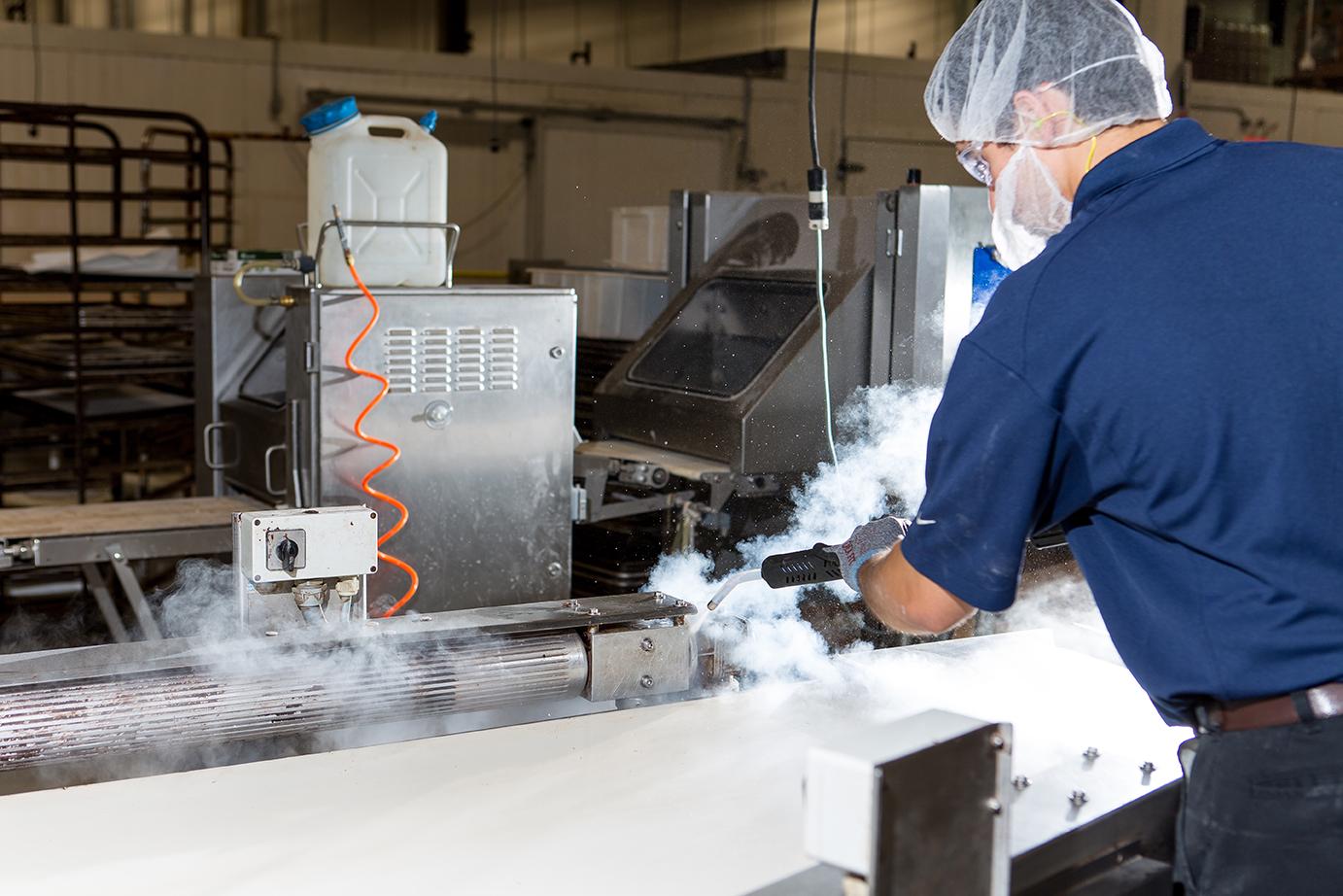 Manufacturing Process
Manufacturing Process
2+ MIN
31/07/2023
Is Dry Vapour Steam Good For My Cleaning Needs?
Consider these questions before purchasing or considering a speciality dry steam cleaner: Will you use the steam cleaner in a commercial or industrial environment? What equipment and soils will you be cleaning? What is Vapour Steam Cleaning Used For? Vapour steam cleaners have been used primarily for general cleaning and sanitising hard surfaces without chemicals. Applications include kitchen and bathroom grout cleaning, restaurants, supermarkets, schools, hotels, apartment buildings, and private homes. In addition, property owners and municipalities frequently use vapour steam cleaners for gum removal. Using a vapour steam cleaner is environmentally friendly and highly effective, and it leaves behind an oil and grease-free surface. The technology has recently found its way into industrial applications. It is likely that a vapour steam cleaner purchased with the intent of using it for one application will soon be used for general cleaning all around the shop as they are great for cleaning up production machinery and many other applications. Food and Beverage Production Dry Baking Production Meat Production and Packing Pharmaceutical production lines Product Packaging lines Dry Vapour Steam Cleaning vs. Other Cleaning Solutions When cleaning or sanitising a facility or equipment where water needs to be minimised or avoided, and chemical cleaning is not preferred, steam is the perfect solution. Steam cleaning with a vapour steam cleaner is environmentally friendly, extremely effective, leaves no residue, and leaves a surface free of oil and grease. With vapour steam cleaners, surfaces without chemicals can be cleaned and sanitised, while other cleaning solutions that involve chemicals may be harmful to the environment. How to Choose a Dry Vapour Steam Cleaner High steam temperature: the higher the temperature at the boiler, the higher the discharge temperature. All Vapour steam cleaners lose some temperature between the boiler and the nozzle. Hotter steam significantly increases cleaning effectiveness. See our Dry Steam Cleaning Buying Guide. Stainless steel boiler – stainless steel resists corrosion and limits heat transfer to its environment. Safety devices such as water level sensor, boiler thermostat, pressure switch, safety pressure valve, and dae-aeration valve. The ability to refill the vapour steam cleaner with water without waiting for the unit to cool down first. This feature can save up to 20 minutes on every refill. Large water reservoir. Steam volume control – uses only the amount of steam needed to do the job. Less steam enhances the vapour steam cleaner's ability to maintain temperature. Handling features such as wheels are large enough to make it easy to roll the vapour steam cleaner over rough surfaces or up and downstairs. A good sturdy handle helps here, too. Accessories – does the manufacturer offer the accessories needed for all applications? Warranty – look for a one-year warranty on the machine and a three-year warranty on the boiler. Next Steps: See our full line of dry vapour steam cleaning products. By: Goodway Tech
 Interviews
Interviews
7+ MIN
28/07/2023
Interview with Sebas Van Den Ende - General Manager of VICTAM
This issue's interviewee is Sebas Van Den Ende, General Manager at VICTAM. Let's meet the man that has launched one of the most important events of the pet food industry. He started his professional career at the Marketing Department of a Packaging company in the Netherlands, and later, at the same company, he changed his role as Export Manager for Latin America. In 2000, he made his first steps in the world of exhibitions as he started as Event Manager at Amsterdam RAI, the biggest exhibition organizer in the Netherlands, while he kept organizing events in Brazil and Mexico. How did you start with VICTAM? What's (or has been) your biggest challenge as the General Manager? After 5 years of working with events and exhibitions for a company, I moved to Brazil, where I launched the Latin American Branch of the RAI Group, but, unfortunately, just after the office was launched, a management switch changed strategic vision, and the Brazilian office was not needed anymore. By then, in 2006, I saw big opportunities in Brazil, so I decided to stay in Brazil and launched our own exhibition company. This was the right time at the right place, as Brazil was booming and got the attention because of attracting the World Cup 2014 and the Olympics 2016. In a short time, we built a portfolio of successful events and the developments in Brazil, drew the attention of international event organizers, and eventually, we sold our company to one of them. After the required management handover period, we decided to return to the Netherlands in the beginning of 2018. After some side steps, I felt like returning to the event industry, and exactly at that time, VICTAM came along. Even though the industries for animal nutrition and grain processing were completely new for me, organizing and developing events in these industries is not very different from any other B2B industry, and it gave me the advantage to see things with an open mind. When I started at VICTAM in 2018, the challenge was to get a more balanced portfolio and to have a better coverage of the world. In the process of developing our portfolio, having partnerships and joining existing events were key elements. The idea was to have more qualitative good VICTAM events, but not necessarily more events in the industry, creating a win-win for organizers and participants. In 2019, we signed three important partnerships to execute this strategy, but unfortunately, just after signing the contracts we faced the COVID-19 outbreak. This changed a lot, not only for our industry, but also it strongly influenced our partnerships and internal organization. The biggest challenge, so far, is very clear: to overcome the Coronavirus pandemic. And although the world has overcome it, the landscape in exhibition land is still misty and it will take time before everything is back to normal. When did you realize it was time to arrive in LatAm? What were the reasons that made you take the risk? When I lived in Brazil, we were always looking at new segments for our exhibition portfolio, and it was very clear that the agribusiness, like livestock, soy, sugar cane, corn and grain had a huge potential. We never touched these industries, as they have strong stakeholders, and we felt you need a well-established exhibition brand to convince them in this field. As soon as I started at VICTAM, it was obvious that Latin America was a continent that had our priority to research and after doing this it confirmed the potential we noticed before. As Latin America was a blind spot in our portfolio, the market showed potential and our exhibitors were positive about exhibiting in the region, we decided to launch an event in the continent. Latin America, of course, is much more than Brazil, so the question was where to launch VICTAM LatAm. Argentina, Brazil, Chile, Colombia, Ecuador and Peru are all very important markets for our exhibitors and we considered all of them as possibilities. We decided to launch our event in Sao Paulo, as Brazil is the biggest country in the continent and has Sao Paulo, a central and important hub. There are flight connections to all major cities in South America and there are good facilities to organize events. Of course, my knowledge and connections in Brazil were also factors in the decision as we could start the event in the third gear. After we had received market support from our founding companies (Andritz, CPM, Famsun, Wengerand Zheng Chang) and some national and international associations, we launched our first edition for October 2023, in September last year. Which are the plans for VICTAM in LatAm? Will it take place in different countries of the region? Which periodicity will it have? VICTAM is part of a foundation with the mission of benefiting the animal nutrition industry. For us, the result of the event for our participants is more important than the financial results. After all, the profit we make will go back to the industry by donations to projects and research. Our objective with our events is having bi-annual events in 4 regions (Asia, Europe, Latin America and Middle East/Africa) in the world. For our event VICTAM LatAm, as this will be a bi-annual event, the next edition will be in October 2025. Whether we stay in Sao Paulo or move the event to other countries is not decided yet and also will depend on the results of the event and the feedback from our participants. In the future, we hope that VICTAM will close partnerships and co-host with other events and strategic partners, so that it grows together with other events of the continent. The most important thing is that we answer according to the needs of the market: it's not only about what's convenient for us but rather about meeting our customers' needs. How do you see the growth of the pet food industry in the near future? The pet food industry is a rapidly growing sector, and it is expected to continue to expand in the near future. The increasing number of pet owners, combined with the growing awareness of the importance of pet nutrition, is driving the demand for high-quality and healthy pet food. As a result, the industry is likely to continue to transform and bring along new innovations that cater to the specific needs of pets. Some of these innovations include the use of precision nutrition, sustainable practices, nutrigenomics, alternative protein sources, automation and Blockchain. As a leading global animal feed event organization, we have to make sure to do continuous research to not lag behind and follow all the trends to maintain high-end knowledge by organizing the right conferences with the right topics and by the right people. Overall, the pet food industry is set to remain a key player in the global food industry, as pets continue to play an important role in the lives of millions of people around the world. Therefore, for VICTAM, the pet food segment is growing in importance. Pet food is now one of the main segments of the event, both at the exhibition as in the parallel conference program. What's your point of view, as VICTAM General Manager, regarding new needs, such as sustainability and circular economy? As the industry is expected to continue to focus on sustainability and environmentally friendly practices, consumers become more conscious of their impact on the planet. It is clear that if we want to live with so many people on earth, we must do this in a responsible way, so that the next generations will be proud of us instead of blaming us. I believe that the feed and grain processing industries have an important role to play in promoting sustainability and circular economy practices. There is a growing awareness among consumers and industry stakeholders about the need to reduce waste, conserve resources, and minimize the environmental impact of industrial processes. Thus, it is important for the industry to adopt sustainable practices that support the circular economy. This can be achieved through the implementation of these practices and promotion through different channels (online). As for the offline practices, promotion of sustainability through workshops, seminars and other sessions during the events. In our industry, these are important themes and we give it quite some attention. In our conference program there are several sessions about sustainability and exhibitors we always challenge to have innovations to stimulate this circular economy. We believe that an event like VICTAM, where so many people from different parts of the world come together can contribute to the environment goals. In your experience, what's the most important factor for a successful networking event? Obviously, the most important factor for a successful networking event is to meet the right people. Meeting people with the same interests, meeting people who can help you with a need, problem or question. The more of these contacts the better it is. If you can combine these meetings, with seeing the solutions, feeling a machine and listening to interesting sessions you have a successful networking event. What would you say to professionals, producers and manufacturers that are yet not participating in any networking event to encourage them? We believe that our event in Sao Paulo this October will be a big success. Around 150 companies already signed up, which exceeded our goals for this first event. This will be an event for the whole continent, and we already see quite some registrations from feed mills and pet food producers from several countries from South America. It will be a complete event where companies will meet potential and existing clients from the whole continent. To all feed mills, cooperatives, self-mixing farms and flour processing companies, please register on line and check out the event. Visiting the event will be a one stop experience where you see the latest technology from all over the world, innovative ingredients for nutrition and a very diverse conference program for all kinds of topics. By: Sebas Van Den Ende Source: VICTAM
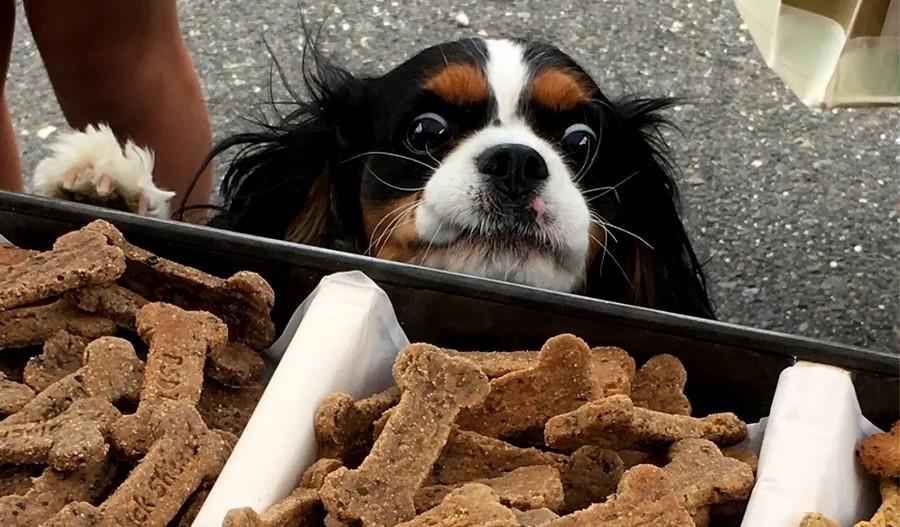 Formulation
Formulation
2+ MIN
26/07/2023
Pet Treats Sales Fueled by Inflation in 2022, Packaged Facts Reports
Growth in the pet treats market has slowed since the large pandemic-era increases in 2020 and 2021, with much of the growth in 2022 fueled by inflation-related price increases rather than by growth in unit sales, according to Packaged Facts. Online sales makes up the largest portion of pet treat sales at 34 percent. By type of pet, dog treats represent the majority of sales, at 78 percent, although cat treats sales are increasing at a faster pace. By product type, indulgent treats make up the largest share of the market, at 36 percent, followed by rawhides/long-lasting chews, functional treats and dental treats. Prolonged inflationary conditions have cooled the pet treats market somewhat, with Packaged Facts survey data showing that 57 percent of pet owners are concerned about rising prices in the pet treats category. Many pet owners are reducing their spending on discretionary items, making multi-functional treats, such as dental treats and those that offer health and wellness benefits, more attractive, Packaged Facts officials reported. Two of the top trends driving growth in the pet treat market include humanization and an increased focus on using pet treats as part of pets' health and wellness regimen, officials said. Behind both of these trends, however, is the pet owner sentiment that pets are part of the family. For many pet owners, pet treats are an opportunity to solidify the pet-owner bond. 'Not only do pet owners use treats to encourage good behavior (for training purposes, for example), they use them to express feelings of affection; 'treat time' has become a way for pet owners to show their pets just how much they mean to them,' said Shannon Landry Brown, brand manager for Packaged Facts pet market research. Despite the challenging economic conditions, Packaged Facts projects the pet treat market to continue to grow over the next five years, with key opportunities including value-positioned treats, treats for cats, and treats featuring alternative proteins. by Packaged Facts
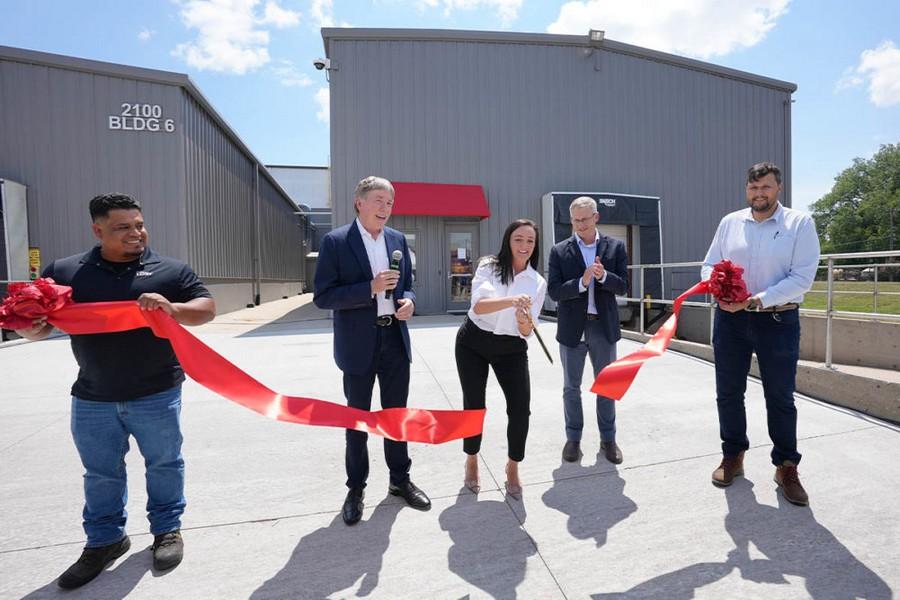 Formulation
Formulation
2+ MIN
24/07/2023
Kemin Nutrisurance unveils new wet pet food pilot lab
During the ribbon cutting celebration on July 20, Kemin employees, customers and local guests were invited to tour the new pilot lab, which will be able to mimic the production of wet pet food in a smaller-scale plant environment. Chris Nelson, Ph.D., president and chief executive officer, Kimberly Nelson, president of Kemin Nutrisurance, and Jason Shelton, Ph.D., vice president of research and development at Kemin Nutrisurance, addressed attendees and shared the mission of the new business unit and pilot lab facility. 'There is enormous potential still left in wet pet food — to understand a lot about the chemistry and how to improve this overall product,' Chris Nelson explained. 'This facility allows us to test those new ideas for our customers.' The state-of-the-art facility offers Kemin Nutrisurance the opportunity to work with current and existing customers to create, test and validate pet food and treats to help better predict large-scale results. The pilot lab offers a dedicated space to develop wet pet food, as well as test dry kibble coatings. It features more production capacity and testing capabilities than most R&D labs, but its smaller scale plant environment provides more flexibility to produce smaller batches and adjust formulations during the process. The opening of the pilot lab served as a platform to introduce customers to Kemin's advancement in its R&D offerings under the new Research and Explorations Services umbrella. 'This is really a celebration of our formalization and the elevation of our service in R&D,' Kimberly Nelson said during the ribbon cutting. 'Services as a platform has been critical to our success for years, but bringing research and exploration as an element to it formerly is the next step in our commitment to our customers.' 'With Research and Exploration Services, we are able to elevate our own R&D efforts, building on Kemin's legacy of market-leading solutions and helping customers test, create and validate pet food products with unmatched accuracy and efficiency,' Shelton added. 'Now, with our expanded customer-service offerings, Kemin Nutrisurance delivers the industry's most comprehensive approach to R&D.' Kemin Nutrisurance's Research and Explorations Services will expand beyond the United States with pilot labs and innovation centers in Brazil, Italy and China. Source: Kemin Industries
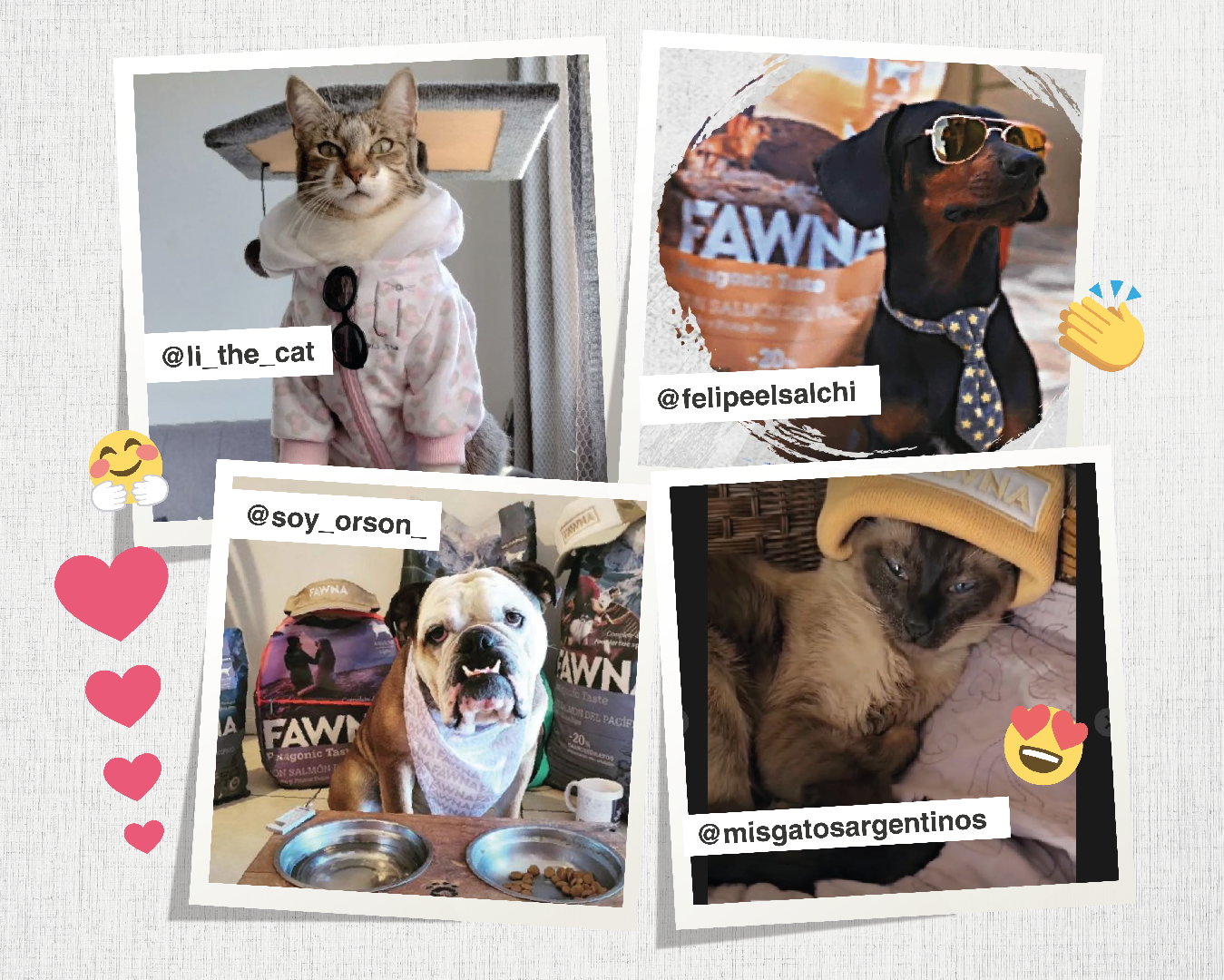 Market Information
Market Information
2+ MIN
21/07/2023
Find out how Fawna and hers InfluFawna promote excellent nutrition for our loyal friends
Fawna sets a trend by spreading her philosophy through her InfluFawna. These charismatic and adorable animals capture the attention of thousands of followers on social platforms, becoming ambassadors and generating greater visibility and emotional connection with consumers. However, it is important to remember that, despite the fun and entertainment they can provide, we must not lose sight of the true need of our faithful friends: love, care and proper nutrition. It is essential that, behind a pet influencer campaign, there is a brand committed to health and well-being, offering quality products and optimal nutrition. When choosing a balanced food for 4-legged members, it is essential to consider the specific nutritional needs of each one. Consulting with a veterinarian is the first step to ensure that we are providing an adequate diet that meets their protein, vitamin and mineral requirements. The humanization of pets should not lead us to neglect their health and well-being. We must remember that our dogs and cats are animals with particular needs and that, although we treat them as members of our family, we cannot forget that they are different from us in terms of nutrition and care. "FAWNA: Patagonic Taste", was born to transform the nutrition of our unconditional companions and has: A high level of protein and a low level of carbohydrates that allow providing excellent body health and nutrition, since they reduce the probability of suffering long-term difficulties related to diabetes, pancreatitis, or digestive and intestinal problems. The highest level of digestible essential amino acids (DIAAS) and fatty acids, from high-quality protein from salmon and chicken, which favors body and cognitive development. Natural prebiotics and probiotics that help increase beneficial intestinal flora, favoring defenses, the intestinal immune system and the absorption of nutrients. Regional ingredients of Patagonian origin and a formulation developed according to the specific needs of dogs and cats. This "World Dog Day", let's celebrate the joy they bring us and the role they play in our lives. But let's also remember the importance of choosing a reliable balanced meal that supports your health and well-being. Let's give our faithful friends a healthy and happy life, both on and off the screens! By: Agroindustrias Baires
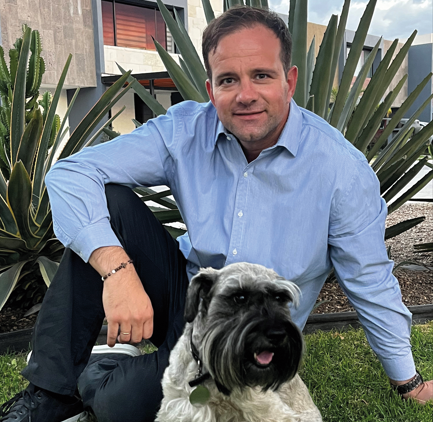 Interviews
Interviews
7+ MIN
21/07/2023
Interview with Juan Becher, General Manager of Symrise Pet Food in Mexico, about the role of the company in the industry
Based on more than 40 years of experience, Symrise Pet Food has achieved comprehensive knowledge of pets, products and markets, which has allowed it to position itself as a global leader in pet food palatability through its SPF brand. In addition, Symrise Pet Food has extended its offer to pet nutrition solutions with its brand Nutrios, pet food protection solutions with the Videka brand. Symrise Pet Food's ambition is to give all pets a better life by being at the heart of every eating experience by 2030. For Symrise Pet Food, proximity to stakeholders is key, according to the motto: "The closer the better". For this reason, in this 2023 the company continues with its expansion –which already has 31 sites distributed in 4 global regions– and has begun to build a new plant in Mexico, which follows the latest construction standards and puts sustainability at the heart of the factory design and operations. We spoke with Juan Becher, General Manager of the Mexico subsidiary, to learn more about the characteristics of the new plant, the production of pet food in Mexico, the future of the market and the role of Symrise Pet Food in the industry as a global leader. Juan, can you tell us a little about yourself and Symrise Pet Food in Mexico? Symrise Pet Food began operating in Mexico in September 2004, and I joined the company in April 2005 as Production Manager. I remember that at that time we were really very few: barely 8 employees running the entire company. During the next 10 years, we had many challenges, but without a doubt there were many more satisfactions! In 2015, as the structure was similar to the current organization, I took the responsibility of leading the commercial management of Mexico and Central America; and in 2021, I assumed the position of General Manager of Mexico. For those of us who do not live in Mexico, could you briefly tell us what is the Mexican pet food market like and what is its current context? Back in 2004, Mexico was the seventh pet food producing country; today we can say that we are the fourth, with around 1,700,000 tons produced in 2022 and according to our internal estimates. We only have very large markets above us, such as the United States, Brazil and China. As in the other countries in the region, Mexico is a country dominated by dogs (small ones mostly), but with a remarkable growth in the cat population. The phenomenon of urbanization is not unknown to us, since almost 25% of the population in Mexico is concentrated in the 3 most important cities. The effects of the pandemic and the war in Ukraine forced all producers to reassess their strategies and adapt them to the "value for money" that is heard so often. Fortunately, the Mexican pet food industry is robust and has a lot of investment behind it, so each kibble produced has the value that pet owners seek when feeding their companions. What could you tell us about the new plant that you started to build? The new plant will be located in the city of Querétaro, very close to the current one. In 2021 we acquired a 2-hectare piece of land to build the offices and the production plant. In total, we are talking about 6,600 square meters and a total of 4 buildings. Like the new plants in Brazil and Colombia, our plant will have high standards in terms of infrastructure, process technologies and automation, thanks to which we will be able to continue manufacturing the environmentally responsible products that our customers choose and need. Industry and market knowledge Nobody ignores that Latin America is one of the regions that appreciates pets the most. In addition to being one of the regions with most pets per inhabitant, a recent statistic found that 67% of the people in Latin America prefer their pets to their friends. Symrise Pet Food works with the commitment to contribute not only to the benefit of the pet, but also to the close affective relationship between the pet owner and the pet, who in many cases, is considered as another member of the family. Juan, what could you tell us about Symrise Pet Food's contribution to the industry? Thanks to our commercial and productive network around the world, we have a comprehensive knowledge of the local manufacturer and its needs, but also of the pet owners and their pets, who are always looking for new and better products. These three, without a doubt, are the main players in the pet food industry and the ones that make the wheel of our industry turn. In our almost 20 years of presence in the Mexican market, we have always considered it important to listen to them and find solutions that meet their expectations. When we talk about food for our beloved pets, it is extremely important to provide confidence and safety at all times: from the moment before the reception of raw materials to the dispatch and delivery to the customer. The plant and our work teams support the pet food industry by offering the highest quality and food safety globally, to meet (and exceed) everyone's expectations. Through our Aplicalis team, we go beyond the simple delivery of products and provide our clients with more than 40 years of experience and leadership in the palatability market to improve both their production processes and the application of palatants. In short, we help them produce that food or treat that they thought of and want to launch on the market. The importance of sustainability Symrise Pet Food was born from the desire to value by-products, which is why from its origins it has included sustainable development in its strategy. Its roadmap is based on four pillars: Footprint (to minimize the environmental footprint throughout the value chain), Innovation (to maximize the social and environmental performance of products), Sourcing (to maximize the sustainability of the supply chain and raw materials) and Care (to improve the well-being of employees and the local community). Through them, the company seeks to improve its performance in various areas to achieve the goals set by the United Nations for 2030, with special attention to the challenge of reaching 2030 while being neutral with respect to the emission of greenhouse gases. We asked Juan Becher to elaborate on the value of sustainability and Symrise Pet Food's commitment in this regard. You mentioned responsibility with the environment before, something key in the current situation of the planet. How important do you think sustainability is today in the Mexican pet food market? In my opinion, in 2023 all companies in the industry should consider sustainability as an indispensable factor when planning their activities and processes. Although broadly speaking the pet food industry has its origins in the revalorization of by-products, technological advances and access to information have made it clear that the traditional ways of producing must change. At Symrise Pet Food we have a tool that has added a lot of value to our products and, consequently, to pet food and its industry: the Ecodesign Matrix. With it we measure the environmental impact of a product before and after its production; we measure the impact of our raw materials and ingredients, their transportation and later the impact of transporting our products to the customer. In this way, we can develop alternatives with the same palatability performance, but with a substantial improvement in environmental impacts. Currently, the big players are the millennials (generation Y) and, although they are not yet mature in terms of income, they are the biggest group of owners of pets and are very involved in caring for the environment. They seek to guide their consumption towards truly responsible brands that face the new challenges of industrial design. Now, answering your question, I think that the Mexican market is giving it the corresponding importance. Thanks to our close contact with almost all pet food producers, I know that they are working to develop more and better products that are ethical and environmentally responsible. According to Mintel, in 2018, 10% of the products launched in the Mexican market had one or more claims in the "Ethical and environmental" category, and in 2022 we were in the order of 21%. We are certainly going on the right path. How do you see the market in Mexico and our region 10 years from now? Since I started working in the industry, I have not ceased to be surprised by the growth and maturation that it experiences year after year. Our new plant is designed with the market of the next 10 years in mind; a much more robust, developed market with a greater offer of wet products and treats, both for dogs and cats. The idea of outstanding eating experiences, natural ingredients and functional foods that improve the lives of pets will be determining issues for their owners, as they have been for several years. Thank you very much Juan for your time. Would you like to add anything else to close? First of all, I want to thank our clients who trust us every day and know that we put all our effort into giving them the best solutions to their needs; without them we would not be the undisputed leaders in palatability. Secondly, and no less important, I would like to thank you for spreading the word about everything we do at Symrise Pet Food, as well as spreading what our colleagues and clients do. I think it is essential to do, but you also have to make it known. Developing the pet food industry and modifying the forms of production is everyone's work and commitment. By: Symrise Pet Food Source: All Pet Food Magazine
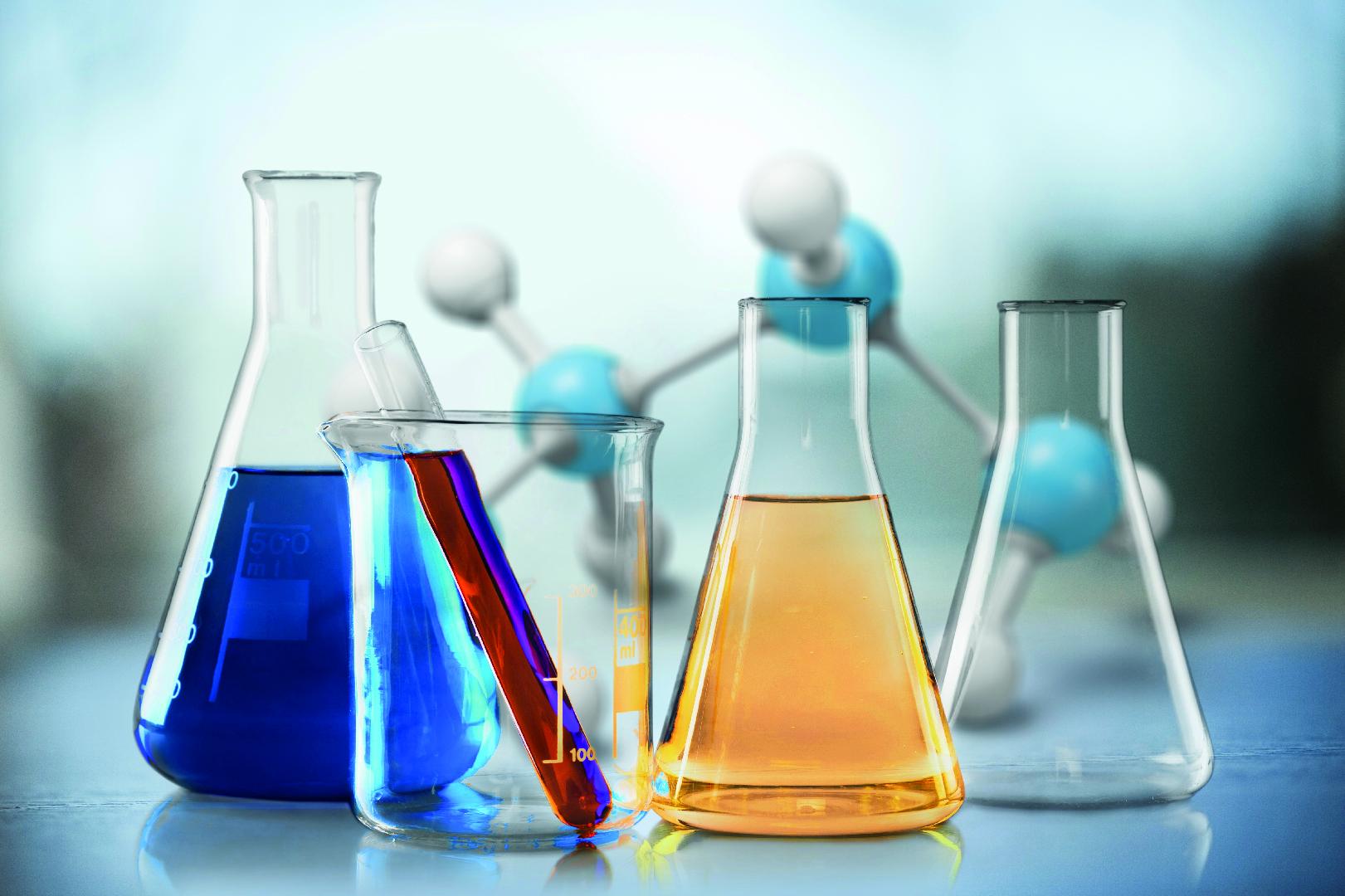 Micro Ingredients
Micro Ingredients
3+ MIN
19/07/2023
Por Ludmila Barbi T. Bomcompagni
The use of additives in the pet food market
The use of additives in pet food is already well established in Brazil and follows the standards and regulations of MAPA, ANVISA, FDA - Food and Drug Administration -USDA. All additives used in pet food must be included in the list of raw materials, ingredients, and additives authorized for use in animal feed, also called feed-grade products. But not all the additives described in the legislation are intended exclusively for animal feed, the additives present in pet food are generally the same, or very similar, to those used for food for human consumption (food-grade). Therefore, it is common to find suppliers that manufacture/market these food-grade additives, for human nutrition, and are, therefore, capable of being used in animal nutrition. The growth of the pet food market promotes the use and development of new additives considering that some of them, mainly those in the sensory, nutritional, and zootechnical fields, can improve the quality and palatability of the food to be supplied to the pet. And also, they become a differential in the formulation of products and in the creation of an argument that can be decisive in the purchase choice by the consumer. This need for innovation and leadership in the midst of so much competition leads many pet food industries to invest in additives inclusion in their formulations. Premium and Super Premium category foods for dogs usually have a wide variety of zootechnical additives in their composition, among which we usually see chondroitin sulfate, glucosamine sulfate, hexametaphosphate, zeolite, bentonite, cassava extract, prebiotics, and probiotics, among others. And, in cat diets, insoluble and moderately fermented sources of fiber, such as cellulose or beet pulp, are additives consistently found in higher-end hairball control products, for example. It is interesting to see companies that care about the quality of their products to stay in the market and grow within it. Innovation is necessary for all aspects of the pet food production chain, starting with new ingredients and additives development. From our point of view, this is a factor with very positive points, since it generates research and improvement of pet products, and, consequently, promotes the health and greater longevity of dogs and cats. Even so, we see some negative points in additives use if they are only related to the market interests. The cost of using additives, and the lack of information on the ideal levels of use in the different types of products available in the pet market, make each industry assume the amount that it is interested in its formulation. Many companies are including them in their formulas in trace amounts, but still declare the benefits of the additives on their labels as a product differential, guaranteeing a benefit that is unlikely to be achieved. We believe that the pet market in Brazil is still poorly regulated in terms of minimum and maximum inclusion of additives in dog and cat food and that more research, debate, and discussion are needed on the subject. By: Ludmila Barbi and Erika Stasieniuk Source: All Pet Food Magazine
 Labels
Labels
4+ MIN
18/07/2023
Pet Food Label Modernization is Coming Soon!
A final draft of the updated model regulations for pet food and specialty pet food was voted on by the executive committee and will be presented to the full membership on July 31st for a vote. There are numerous changes to the regulations that will impact the labeling for all pet food, pet treats and specialty pet food and treats. Below is a discussion of some of the main changes that will impact your pet food label design. Please note that small and very small packages with a total printable area of 40 or 12 square inches or less respectively will have different layout requirements due to space constraints Changes to the front of the pack include the requirement for a verbatim intended use statement. This statement must be in the bottom ⅓ of the principal display panel and parallel to the bottom of the panel (front panel for packages that sit upright on the shelf and also on the bottom butt panel for packages that lay flat on the shelf), must be at least as large as the net quantity statement per FDA 16 CFR 500.21, must be in the same color and style font and on the same background color as the statement of net quantity and must be separated from the statement of net quantity and any other label material by the height of the 'N' above and below and by twice the width of the 'N' on either side. Some examples of the verbatim intended use statements include: 'Complete Dog Food' for foods that are complete and balanced for all life stages, including growth of large size dogs. 'Complete Puppy Food' or 'Complete Food for Puppies' for growth products that include growth of large size dogs. 'Complete Food for Adult Cats' for adult maintenance cat foods. 'Complete Food for Puppies (<70 lb. as an adult)' for growth diets that are not appropriate for the growth of large size dogs. 'Complete Food for Dogs (except puppies >70 lb. as an adult)' for all life stages products that exclude the growth of large size dogs. Another major change is the replacement of the Guaranteed Analysis with a Pet Nutrition Facts section. This change was made to more closely align the nutritional information with the format on human food labels in order to help the consumer better understand what they are buying. The Pet Nutrition Facts is required to be included on all pet foods in a prominent place on the label (but not necessarily on the principal display panel). On most packages (except very small labels), this will be in a box set off by hairlines and will be all black or one-color type, printed on white or neutral background. The heading 'Pet Nutrition Facts' will be centered in the top row of the box and must be twice the size of the other text in the box. The familiar household unit (cup, can, treat, etc) will be right justified in the next row and must include the weight in grams. A bold line must separate this information from the next row. Calorie content will appear in the next line of the box and will no longer be stated as kcal/kg. It must be stated in kcal/'familiar household unit' and will be left justified. If the calories are determined by a feeding study, the word '(fed)' will appear after the value. Maybe provide an example of a few familiar household units. Underneath the calorie content, indented text will appear indicating the calories from protein, fat and carbohydrates. The Modified Atwater formula is still the correct way to determine the calorie content. Following the calorie content will be the guaranteed nutrient levels. Protein, Fat, Carbohydrates (calculated value), Total Dietary Fiber and Moisture are the required guarantees for every label. These will be expressed in % and also in grams/'familiar household unit.' If you don't have dietary fiber data for your recipes, now would be a good time to begin testing to obtain these values. If you have additional nutritional guarantees, they may be included similarly to today's labels. Essential guarantees must still follow the order of the AAFCO nutrient profiles and nonessential nutrient guarantees are listed following the last essential guarantee. The verbatim nutritional adequacy statement will still be required and must now live within the Pet Nutrition Facts box so that placement is consistent across all products. Feeding directions must be included on all labels and should be consistent with the intended use statement that is on the principal display panel. There are some other minor changes that may impact your labeling, but the information above captures the most impactful of the proposed updates to the regulations. The implementation workgroup is proposing 6 years for the timeline for labeling in the market to comply with the new regulations. Consumer outreach and education has been a top priority and as more brands launch compliant labels, pet parents will be looking for this new format. This could potentially become part of the buying decision for savvy pet parents. The North River Enterprises team is involved in several AAFCO workgroups helping to develop educational materials explaining the required changes once PFLM becomes a reality. by Melissa Brookshire
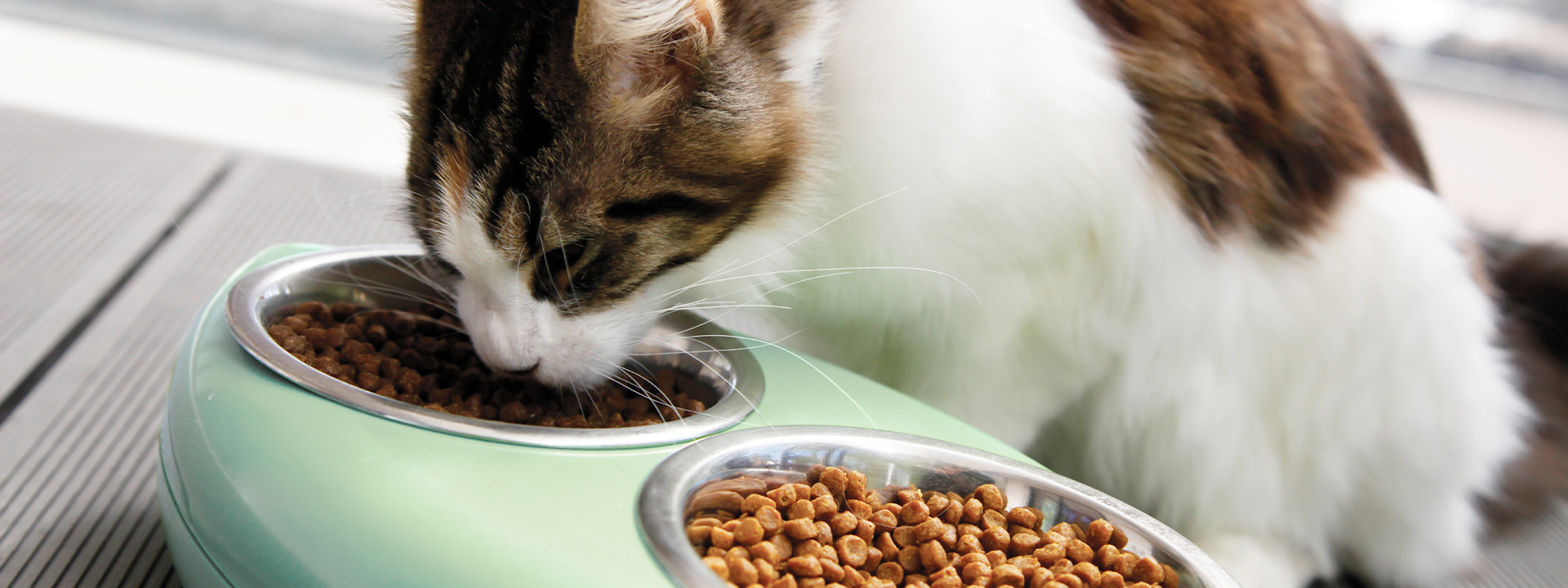 Market Information
Market Information
1+ MIN
13/07/2023
How to measure pet food palatability: methods overview
All pet food manufacturers want their products to be eaten. All pet food manufacturers thus need to design palatable pet foods. But how to know whether a product is appetizing? How to know whether Max will run to his bowl to eat his kibbles? Or whether fish is more attractive to Kitty than a mouse? And what about pet owner? Should is opinion be part of the equation? From acceptance measurement to enjoyment assessment, DISCOVER METHODS to uncover what pets crave for... Source: Symrise Pet Food
 Vitamins
Vitamins
4+ MIN
11/07/2023
Nutritional needs of cats and dogs
Pet food can be complete or complementary. Complete pet food is nutritionally complete: providing all the nutrients in the amounts and proportions your pet needs. Complementary pet food (e.g. treats) is designed to be only a part of the diet and it won't meet the nutritional requirements when fed alone.
Pet food manufacturers have developed the nutritional expertise to ensure pet food contains the right ingredients in the right amounts to supply the needed nutrients. They often work together with independent nutrition scientists or follow guidelines which have been developed by a group of scientists working together.
The broadening knowledge of pet nutrition and food technology has transformed the pet food industry remarkably over the years. It is now widely recognised by the veterinary profession and other stakeholders that improved nutrition is an important factor which helps pets to live longer, healthier lives.
Besides water there are 5 key nutrients:
Proteins
Carbohydrates
Fats
Vitamins
Minerals
The first 3 provide the energy your pet needs for e.g. growth, digestion, temperature regulation and of course activity.
Proteins
Proteins are made up of amino acids. There are hundreds of different amino acids, but a number of these are required for dogs and cats. Pets can produce some amino acids themselves; those are the so-called non-essential amino acids which do not need to be present in the diet. Others are essential and need to be part of the pet food: for dogs there are 10 essential amino acids, for cats there are 11.
Proteins are the building blocks of organs, muscles, bones, blood, immune system and hair and nails. Proteins in pet food can come from various different ingredients, both from animal and vegetable origin like poultry, beef, pork, fish, eggs, corn, rice, peas or soybeans.
It's important that the pet eats the right amount of proteins and that the protein can be easily digested and absorbed, which is influenced by the source of the protein and the processing of the food. In prepared pet food, manufacturers generally select a variety of ingredients to provide the required amount and type of proteins/amino acids.
Excess proteins which are consumed by the pet are not stored in the body and also not used to make even more muscle tissue. Feeding extra protein in excess of the amount that your pet requires provides no health benefit to your pet.
Carbohydrates
Carbohydrates are used by the body to provide immediate energy for activities and are stored in the liver and muscle as glycogen. Energy use is needed for various body functions like metabolism and the function of the brain and nervous system. There exists no minimum level of carbohydrates which needs to be in pet food, but carbohydrates provide a concentrated source of dietary energy and dietary fibre.
There are two types: digestible carbohydrates (starches and sugars) which provide energy and indigestible carbohydrates (fibre) which are important for stool quality and gut motility. Fibres can help in weight management because they are low in calories and help provide the feeling of satiety.
The ingredients providing carbohydrates are mainly plant ingredients like corn, barley, peas, rice, wheat and potatoes. Dietary fibre sources include for instance dried beet pulp, wheat bran or soybean hulls. Many sources of carbohydrates also provide other nutrients like protein, fat or vitamins.
Because of the manufacturing process of grinding and cooking the carbohydrates become easily digestible. A genetic change in the ancestors of our modern dogs (compared with wolves) allowing them to thrive on a diet rich in starch was a crucial step in their early domestication. Also cats can utilise glucose from digesting starch in their diet. A key exception is the pet's ability to digest lactose (milk sugar) because they have lower levels of the enzyme lactase required to split the lactose into individual sugars.
Dietary fat
Fats in pet food are a source of essential fatty acids which are needed to make certain hormones and maintain the cell membranes. Certain vitamins (A, D, E and K) can only be absorbed, stored and transported by fat. Dietary fats improve palatability and add texture for greater enjoyment of the food. And of course, fats are a great source of energy because they provide about 2 ½ times the level of energy that proteins or carbohydrates can provide. So especially for active animals fats are important, while at the same time we need to be careful with the fat intake for many indoor pets where controlling fat intake helps them not become overweight or obese.
Fats in pet food come from animal and vegetable sources.
Two key fatty acid families are the omega-3 and omega-6 (or n-3 and n-6) families. Omega-3 fatty acids are needed for cell membranes and reduces inflammation. Good sources of omega-3 fatty acids are fish, shellfish and flaxseed. Omega-6 fatty acids are important to aid in the process of repairing tissue and are found in vegetable oils.
Minerals & Vitamins
The major or macro minerals needed in the body are calcium, phosphorus, potassium, sodium, chloride and magnesium. The amounts needed of the trace elements are much smaller and these include for instance iron, copper and selenium.
Vitamins are nutrients needed in very small amounts, but they enable many functions in the body. Dogs and cats cannot make all the vitamins they need; so these must be supplied by the food.
Minerals and vitamins are partly provided by the ingredients which deliver the major nutrients of protein, carbohydrates and fat and the other minerals and vitamins are added to the recipe.
by FEDIAF
 Market Information
Market Information
1+ MIN
10/07/2023
CPM renews its website and expands its range of solutions with the acquisition of IDAH
Regardless of the business unit or sector, all CPM brands aim to feed, promote, and build a better world for all its inhabitants. Now, thanks to a great redesign job, the company offers a space adapted to mobile devices, user-friendly, fast-loading, and easy navigation to be even closer to those who need their solutions. In addition, the acquisition of the company IDAH, which specialized in technological solutions for the food industry, has recently been announced, a movement that unites two industry leaders for the shared mission of feeding, promoting, and building a better world in a sustainable way. This movement allows CPM not only to enlarge its field of action but also to offer increasingly specific solutions to its clients and to seek growth and insertion in the Asian pet food markets, as well as to introduce this new brand in the Latin American industry. 'The joining of these two successful enterprises will bring a new dimension of solution and service offerings to our customers, thanks to the perfectly complementary nature of our product portfolios." David Webster, President & CEO at CPM. Thanks to this alliance, CPM increases its ability to adapt to the diversity of specifications that the industry currently requires. For now, it will primarily focus on the protein-based markets of aquafeed, pet food, and alternative protein. By: CPM Source: All Pet Food
 Palatants
Palatants
2+ MIN
07/07/2023
FENAGRA 2023 Reflections
This year, more than 7,000 people attended the event with goals to find new suppliers, learn about innovative products and solutions, and discuss new trends in the industry. FENAGRA promoted its Technical Congresses that discussed important issues for the sector, which had the participation of more than 1,800 professionals. The result was 2 days of tradeshow, 3 days of Congresses and 145 exhibitors Marcelo Beraldo, LATAM Director at AFB remarked about the event: 'FENAGRA 2023 has taken an unprecedented proportion in terms of size, quality of visitors and presence of important companies. It was the first post-pandemic event, which enabled a lighter and happier energy. The distancing was replaced by the desire to talk and enjoy the typical Latin warmth of this event. We had excellent contact with our customers and suppliers too.' For Leeann Bo, AFB Global Product Manager, this was her first visit to Brazil and to FENAGRA:'I was impressed by the quantity and variety of information about pet food ingredients. It was a large event with companies bringing many employees from various functions and sectors, leading to valuable conversations and connections'. Carolina Junqueira, responsible for the R&D Department of AFB Brazil, attended the 3 days of congress and said: 'Always a very good time to see friends and learn a lot from professionals, not only from Brazil but also from other countries. Every year is a rich experience!' The day before its opening, AFB participated in a pre-event organized by the company Alltech. It was a day for informative lectures and great networking opportunities in the same complex in which FENAGRA is held. The lecture 'Conditions that affect the palatability of pet food' was presented by Cesar Garrasino, Technical Manager of AFB LATAM. The lecture delved into the various factors that influence the palatability of pet food, an interesting topic for the audience, which was composed mostly of professionals responsible for formulation in pet food companies. Our booth, the information we provided there, the good service and reception of the AFB team once again made a difference in FENAGRA 2023. Our place is guaranteed at FENAGRA 2024, which will be held in an even larger event space that will now be in the capital of the state São Paulo. We value the time spent with our dear customers, suppliers and AFB colleagues from other locations. See you next year! by AFB International Source: All Pet Food
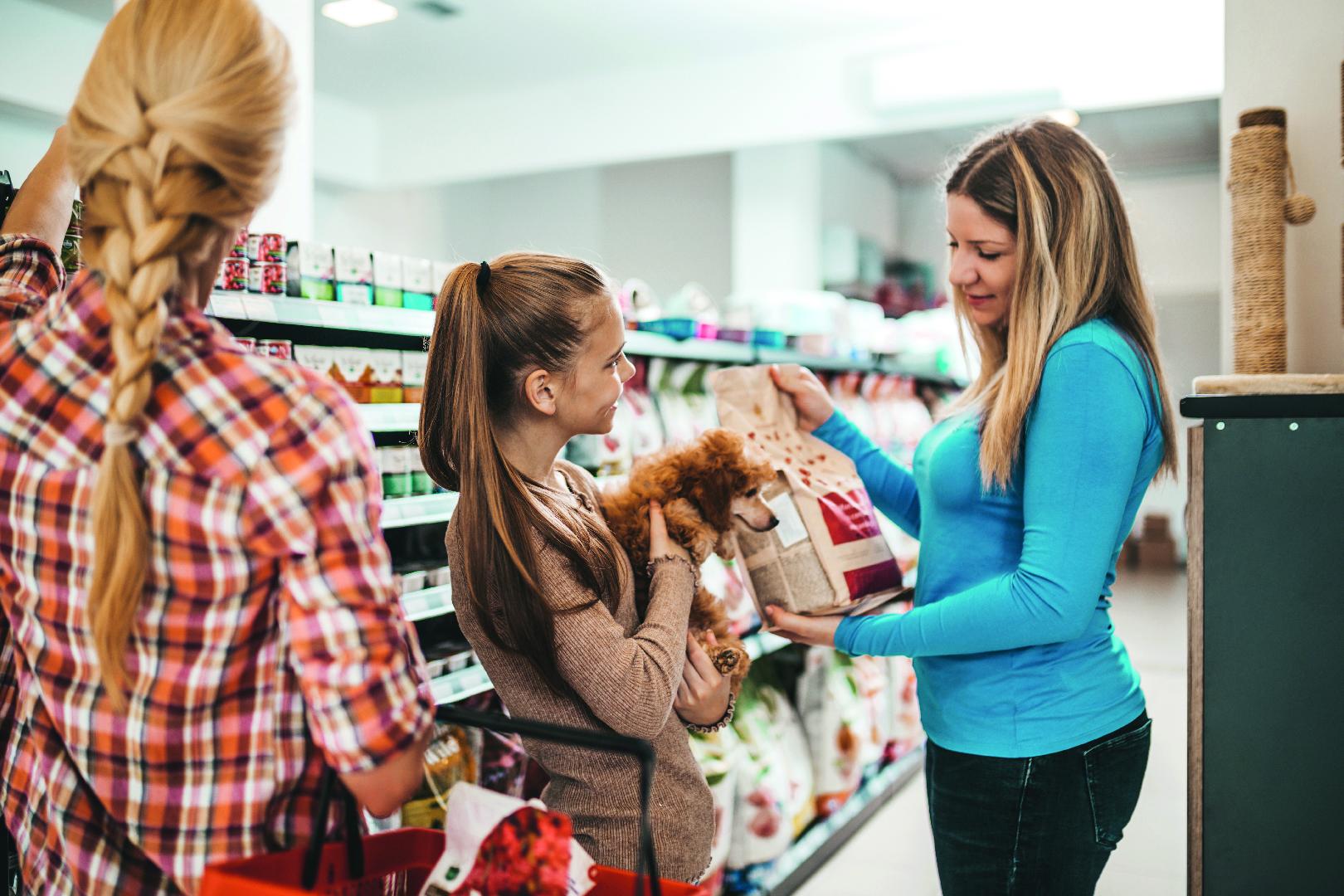 Market Information
Market Information
4+ MIN
06/07/2023
Por María Candelaria Carbajo
The importance of pet food brands for today's consumers
How does humanization impact the development of the pet food market? Paradigm-changing decisions Although the global pet food market has a few large corporations as dominants, we can currently identify a booing movement. Smaller market players are gaining more relevance and introducing new concepts, products, business models, and perspectives. And, even though a large part of consumers chooses them more and more, the truth is that they are also the ones who face the greatest logistical and financial challenges due, precisely, to their size. Answer to new needs Since humanization began to enter the human and pet food industry, a wide variety of products have emerged, generated precisely from consumer conditions, such as gluten-free or vegan dog food. Pet owners, influenced by this humanization trend, have been discovering new possibilities to satisfy their pet needs. This indicates a paradigm shift: it is not only scientists who identify pet needs, but also consumers encouraged to seek non-standardized options to offer their four-legged friends exactly what they need to improve their quality of life. Smart producing Productively speaking, humanization has made producers, at a local level, develop products oriented to newer trends to satisfy these consumer needs, due to the speed with which emerging ventures can come to market. However, beyond all these benefits we've listed, this trend doesn't necessarily mean more pet food sales. It does mean more specialization and complete need satisfaction. So, probably, the change in sales volume in Latin America, for example, will not be due to humanization but to other market factors, such as prices. Opportunities in the sector As more niche markets emerge due to this trend (and others, as well), new opportunities are mostly taken by emerging companies. Several startups are already taking advantage of humanization trends to develop new products in Brazil, Argentina, Chile, and Mexico, for example. The introduction of natural antioxidants, vegetables, alternative grains, tubers, and other natural ingredients debates whether it corresponds with the improvement in ingredient quality or with the experimental formulation of such startups. Change is unstoppable The essential variable for forecasting future humanization trends is human demographic dynamics. Countries with a broad base of young consumers, such as Latin American ones, will likely shape the future of the pet food industry. Changes in this region will translate into products that meet the needs and demands of these consumers. Today's brands, tomorrow's brands Today, consumers identify the size of a brand by its features, not its revenue. NielsenIQ conducted a survey that found that almost 60% of consumers prefer a brand because of its size, whether it is smaller or larger. But how does a consumer define the size of a brand? Apparently, they associate terms like local and independent for small brands and very popular or globally recognized for big ones. The most striking thing about this survey, however, refers to finance: it seems that the income, or what is related to it, does not have any influence on the segmentation of "big" or "small" brands, which allows us to glimpse that pet food choices are practically emotional and entirely subjective. Unfailingly, this information allows us to see a great opportunity for small and medium-sized brands, that can deepen into the ideas that represent them as different, innovative, and local environments responsible for increasing their loyalty and place in the market. When choosing which brand to buy, currently, the consumers who participated in the interview stated that they pay attention to: Price Brand values Reputation Brand identification Business culture: key values to keep growing According to Kristen Ireland and Erin Mies of People Spark Consulting, companies in the sector can implement a 3-step guide to analyze and implement improvements to grow and stay in an increasingly changing market: Knowing what the weak points arising from current practices Clearly defining what you want to build and reinforce it with daily choices Knowing the route ahead and correct course when necessary with clarity and efficiency Business culture is the set of characteristic behaviors and beliefs, and values are the connection point between that culture and the behavior that, in turn, is what achieves identification with consumers. Conclusion The market is changing, progressively but radically, as consumers who come and join the pet food market for pet acquisition want, seek, and demand completely innovative products. It is in our hands to continue working to shape the market according to the needs of those who trust us to feed their most loved friends. Source: All Pet Food Magazine
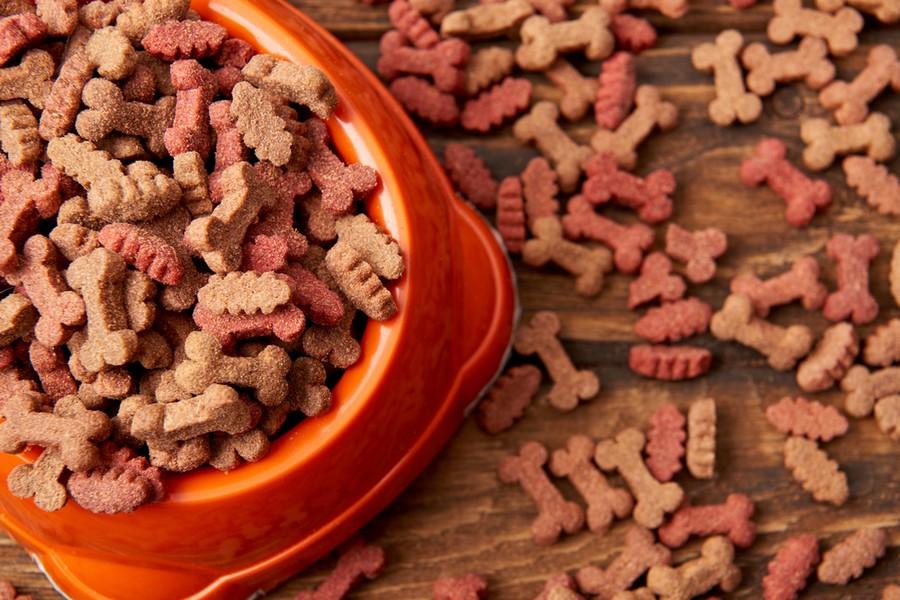 Manufacturing Process
Manufacturing Process
1+ MIN
05/07/2023
NorthWind Extrusion Controls
NorthWind extrusion controls ensure optimization of your system through implementation of specific sequencing during the startup and shutdown of equipment. This in combination with critical alarms and notifications, will help keep your extruders running and minimize wasted product
CRITICAL FACTORS
One of the most critical factors in any extrusion process is the consistent and accurate delivery of materials. Formulas for extrusion are typically set up based on a primary ingredient. All other ingredients in the formula are adjusted based on the level of the primary ingredient. NorthWind's Loss-In-Weight algorithm is designed to maintain consistency in primary ingredient rates even during refill. As the primary rate is increased or decreased, our system automatically adjusts the rates of all ingredients quickly, ensuring that the finished product is always within spec.
RECIPE MANAGEMENT
BatchLOGIX®, a robust recipe management tool was originally designed for batching systems is versatile enough to incorporate continuous formulas as well. BatchLOGIX offers lot tracking and tracing of ingredients which are critical features, especially in food and pet food applications. These features can also be extended into the batching and ingredient delivery systems seen in most extrusion plants.
ALEARN MORE ABOUT BATCHLOGIX
by Northwind
Source: All Pet Food
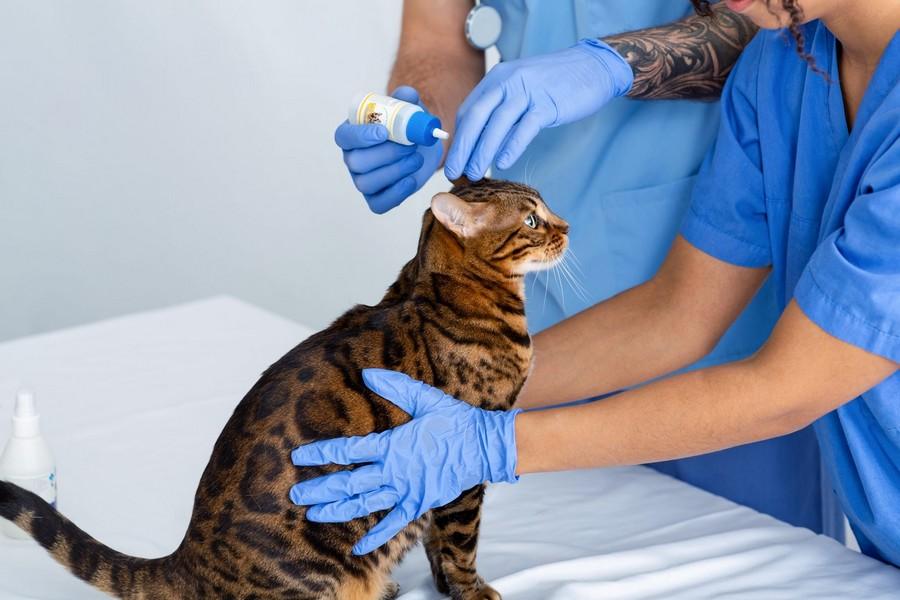 Cats
Cats
2+ MIN
02/07/2023
Immunological disease, reproductive issues more common in purebred cats
Purebred cats are more likely to experience reproductive issues, heart disease, and surgical complications as compared to mixed-breed felines. This is according to a Morris Animal Foundation-funded study, published by researchers from the University of Guelph (U of G) in Canada. To identify the difference in disease risk between purebred cats and their domestic crossbreed counterparts, the research team examined the records of approximate 550,000 cats, collected by Agria Pet Insurance Company in Sweden. The data encompassed information from insurance policies and claims, along with the cats' breed, age, and sex. The study revealed that purebred cats, compared to domestic cross breeds, were more likely to develop diseases in most disease categories, including: Female reproductive issues Heart disease Complications from surgery Lower respiratory infections Immunological diseases 'This study's findings provide important insight for cat owners, veterinarians, breeders, and researchers, offering a comparative look at disease patterns in purebred cats versus mixed-breed cats,' says Barr Hadar, DVM, one of the paper's authors. Surprisingly, though, the study found domestic crossbred cats were more likely to develop endocrine, skin, and mobility issues than purebred cats, Morris Animal Foundation reports. 'One of the potential explanations for this finding is that domestic cats might have greater access to the outdoors, leading to more injuries, skin, and locomotive issues because they're outside jumping and running around,' Dr. Hadar says. Researchers are currently analyzing the dataset to develop predictive models with the aim of implementing them in a clinical setting to forecast the likelihood of specific diseases in cats. 'Information on feline disease frequency and risk is a valuable tool that can help guide clinical decision-making, assist in monitoring and planning of breeding programs, educate cat owners, and prioritize research,' Dr. Hadar says. 'A more granular look into specific causes of morbidity would be beneficial.' The findings have been published in VetRecord.
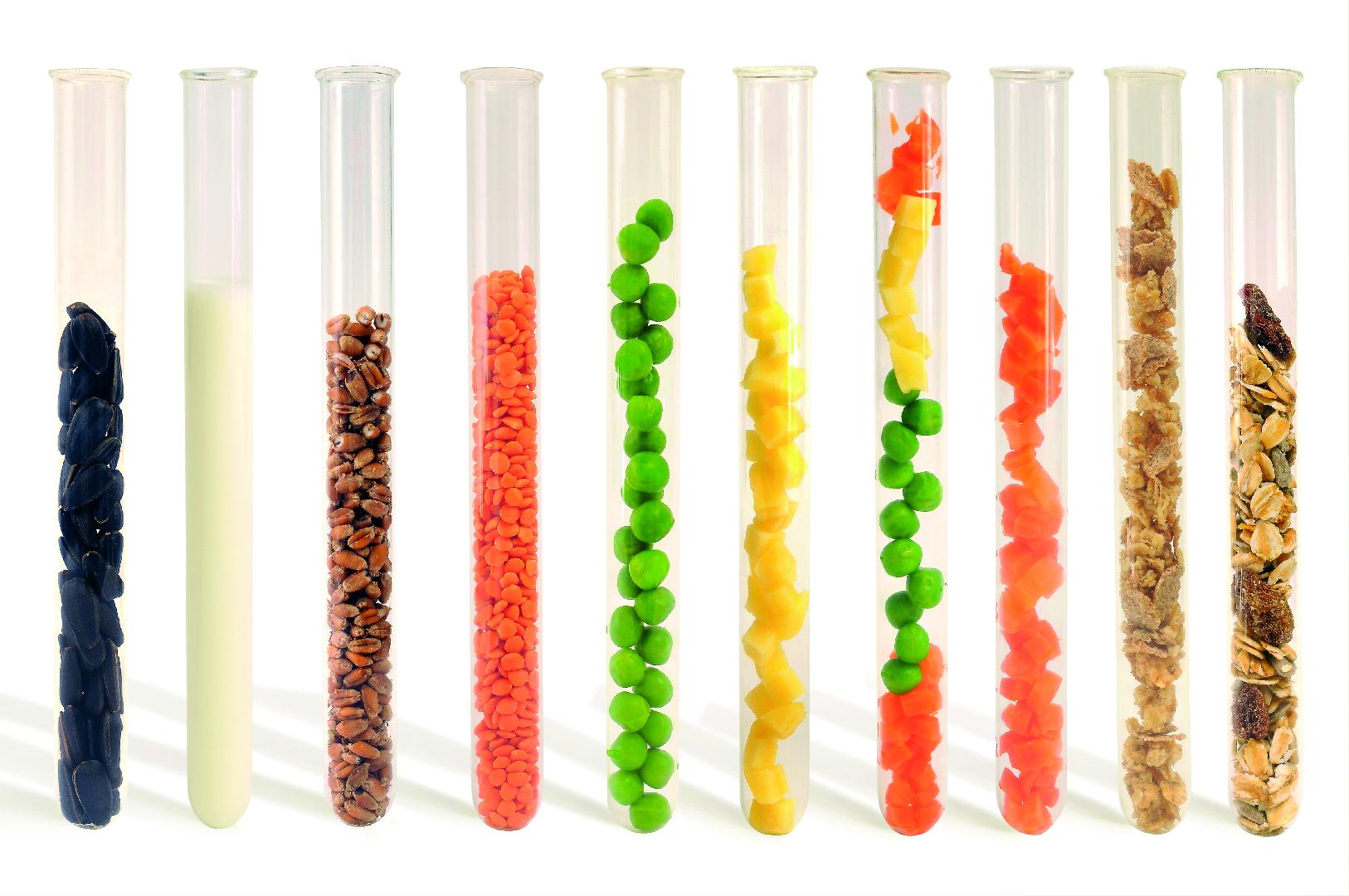 Vegetable Origin
Vegetable Origin
5+ MIN
30/06/2023
Achieving Multiple Benefits with Functional Fiber Ingredients - A Holistic Approach to Pet Food Innovation
Turning to Functional Fiber for Added Fortification Texture and uniformity of pet foods are key quality attributes that are important to appeal both pet owners and their furry friends. Given the variable nature of pet food ingredients and the complexity of the manufacturing process, creating the right consistency can be a challenge for the manufacturer. From a functional standpoint a novel type of fiber based on long cellulose particles is gaining enormous traction in various types of 'grain free' recipes with higher meat inclusion. In extruded and baked applications the long and fibrillated fibers help to improve binding of ingredients and to add a particular firm texture in the final product. Thereby only small amounts of the fiber also prove to shorten drying time. Long cellulose fibers tend to keep the surface of the extruded product open and support moisture evaporation. In wet pet foods the long and thin cellulose particle enhances texture in meat chunks and reduces syneresis because of the high water retention and emulsion capabilities of the fiber. During retorting the fiber network helps to maintain the shape of the chunk and prevents unpleasant cook-out effects into the gravy. Additional cost saving effects can be achieved through the replacement of more expensive binder sources when reformulating lower-cost pet foods with cellulose fiber. On-Trend Pet Food Segments with Fiber-Based Solutions In recent years there has been rapid growth with smaller pet food segments like raw/frozen foods and meal toppers. These product categories allow pet parents to put their own touch on mealtimes. However, unlike more traditional formats like dry and wet foods, the category of pre-prepared complete raw foods is still more a niche segment because handling and preparation time of frozen foods does not provide the same level of convenience as opening a bag or a tin. In frozen foods, for example, the issue of syneresis is still very common. This means if pet owners are defrosting such foods prior to feeding, the molded products start loosing their shape and most of the liquids like water and blood start to leak out which does not look attractive to the pet owner. To overcome such issues, cellulose gels that are designed for human food applications such as ice cream or beverages, are used today also in fresh and frozen foods. Existing frozen food lines were redesigned with these easy dispersible cellulose gels to offer more convenience for pet owners. Cellulose gels are typically made by the process of copolymerization with Microcrystalline cellulose and other gums to create unique properties that are usually not found in conventional fiber gums. The fiber exhibits strong gel thickening behavior while having a good suspension ability, but also functions as emulsifier, fat and water binder. Beyond fresh and frozen pet foods, the segment of toppings, gravies and mix-ins is another emerging product category where manufacturers and pet owners can benefit from the strong stabilizing system of a fiber gel. Special vet-broth formulas, for example, are today supplemented with fiber gels to create a strong viscous emulsion when the powdered blend is mixed with water to support pets that need additional hydration. The unique film forming properties of the fiber gel are also helping to preserve freshness of dry foods once the meal topper is served as a supplement by the pet owner. Because of the fat-like characteristics, cellulose gels are creating a more creamy texture of the final product that can increase appetite appeal for picky eaters. Fiber Innovation for more Differentiation on Shelf Cat and dog food products are more sophisticated than ever and reflect many of the trends that are seen in food products for humans. Foods that come in different flavors, textures and shapes, claim to help maintain active lifestyles, and address specific health needs by the use of unique, marketable and functional ingredients. The downside of many nutritional and sometimes very costly ingredients is that they may potentially improve the quality of life for pets, but they are not visible to grab the attention of impulse buyers that are willing to spoil their pets with special treats and foods. So developing innovative marketing concepts with appealing ingredients is still a major challenge for the pet food industry. Microbeads made from natural and biodegradable cellulose fiber ingredients are a new concept creating an exciting innovation platform for the pet food industry from which to launch more complete solutions in dental foods. Although initially developed as cleansing and polishing ingredients in all type of personal care products for humans, the fiber pearls are today used in pet food formulations that target the oral care claim. The cellulose microbeads are compressed by an intense mechanical process to create round shaped pearls with a size of up to 1mm. These co-processed fiber pearls resist impact by heat and moisture and survive even harsh manufacturing processes such extrusion, tableting or retorting. This guarantees good visibility in the final product. Due to this unique characteristic the pet food industry is using these ingredients as abrasive agents for enhanced dental foods and to make oral care products looking more appealing to the consumers. Getting Greener with Natural Fiber Ingredients As pet owners increasingly look for clean label, sustainable and natural products finding the right fiber ingredient is more important than ever. More recently, plant-derived co-products of the human food chain became a ripe source of innovation for fiber ingredients. Fibers made of local sourced apples, for example, are becoming a preferred choice in a variety of pet foods and treats because of its unique composition of insoluble and soluble fibers, as well as pectin. Apple fiber is typically made of upcycled pomace procured from juicing companies. From a functional standpoint, the pectin content helps bind moisture and oil in pet foods and treats to enhance processability, moistness and final texture. In semimoist foods it may even replace chemical emulsifiers and moisture-binding agents. On top of it, this type of fiber delivers nutritional benefits due to prebiotic effects and provides also a positive sustainability story for brands. Latest developments in the field of fiber ingredients provide plenty of new opportunities for innovation. As pet food product developers brainstorm the next big chewy dog treat or nutritionally complete cat food, they may want to consider some of the suggestions that offer ways to differentiate products and break into untapped areas in the pet food industry. By: Peter Graff - Head of Business Unit Petfood & Aquafeed - JRS Animal Nutrition Source: All Pet Food Magazine
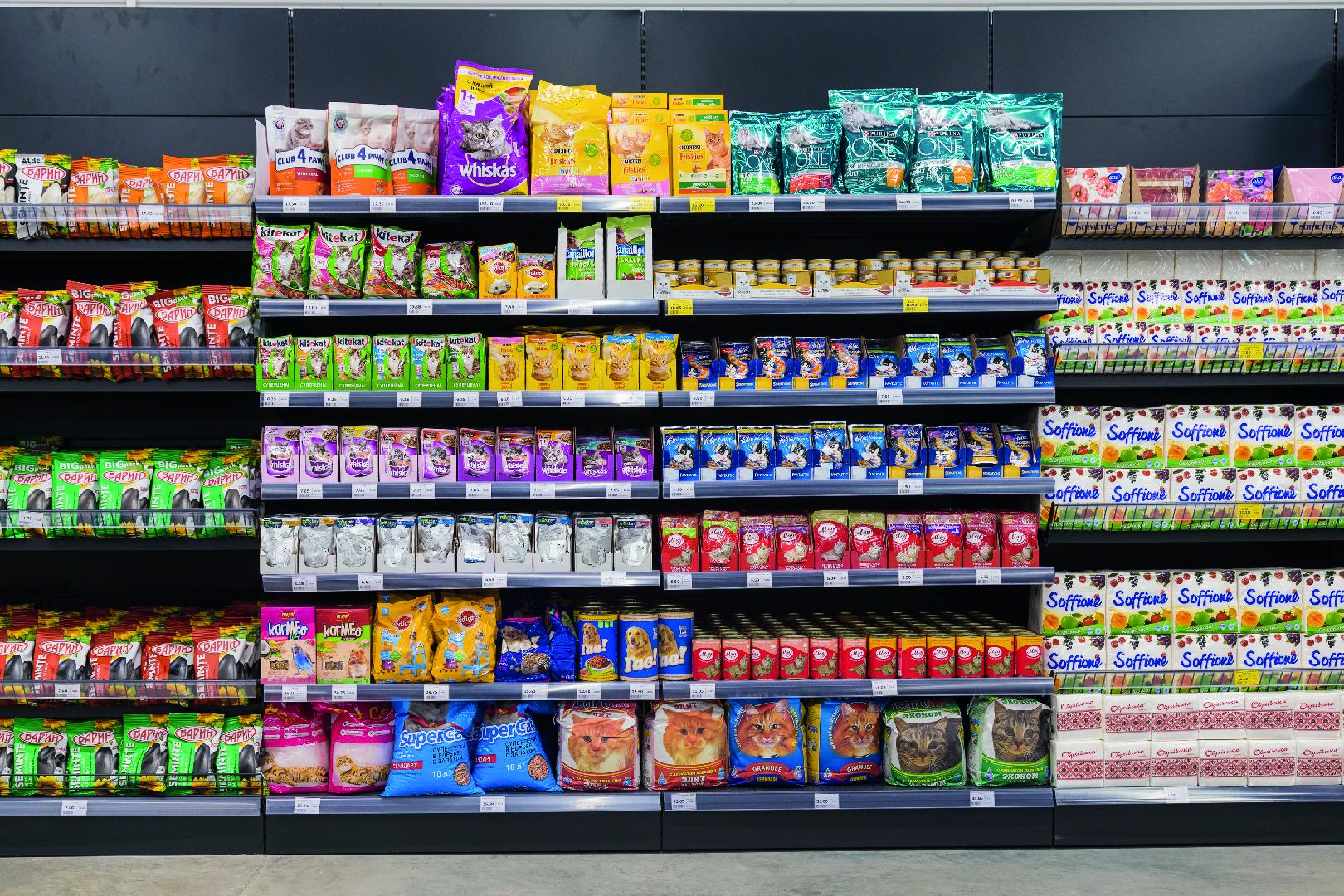 Market Information
Market Information
3+ MIN
29/06/2023
Por María Candelaria Carbajo
The impact of e-commerce on pet food packaging
Today, this skyrocketing increase in online pet-related purchases continues to change significant aspects of manufacturers' operations. When it all started: the pandemic The COVID-19 pandemic produced significant changes in the way people buy goods and services, and this was no exception for the pet food category. This, little by little, has made producers and manufacturers in the industry begin to recalculate and reflect on what will be the most effective way to move pet food and snacks that are purchased online today, both from a strategic and technical point of view. The challenges The requirements for packaging for online e-commerce can be very different from those of traditional channels because, logically, they are exposed to different situations, contexts, environments, and companies that intervene from the time of their production until their arrival at the home of final consumers. Quality, above all Good packaging must provide, above all other characteristics, sufficient quality to safeguard product quality and maintain its freshness. For this, it must be solid and, ideally, sustainable. With a new consumer pathway growing in this way, there is no doubt that packaging must be designed for its rigors and challenges, offering resistance to punctures and scratches but, at the same time, not diminishing its functionality. Finally, the exterior design must provide clear nutritional information and clean labels. The price, the expected one The supply chain is getting tighter, and this results in an increase in raw materials. That aspect, together with the general crisis of the cost of living, means that the group of consumers willing to pay more for premium food has reduced considerably. Therefore, manufacturers must focus on creating packaging that looks and feels premium on the shelf and even at home, and that is produced ethically as quickly and cheaply as possible. Part of this economic production has to do with creating packaging that optimizes its mobilization to the maximum, getting it to fit perfectly in the boxes or pallets in which it is transported. Production planning Production planning is one of the biggest challenges in meeting today's e-commerce demands (because it's constantly changing). Traditionally, major brand manufacturers have gained operating cost efficiencies from the use of large production lines. But now, since changeover equals downtime, there is a need for process lines where operating recipe parameters can be changed quickly and accurately, and machines used must be able to meet that demand, designed for easy cleaning and to minimize cross-contamination. In addition, more and more automation is needed to achieve improved performance, with vision systems and robotics in packaging lines. Beyond all these challenges, good packaging must not only meet the requirements that what it transports needs to arrive at its best quality but also tell the brand's story, its own story, when it reaches the hands of its consumer. New trends, new packaging Subscription models Direct-to-consumer pet food sales have increased, and many of today's subscription services are geared toward pet owners with premium and super-premium leanings. Personalized food subscriptions, personalized packaging, and limited-edition products are also on the rise. These models are very beneficial for brands, as they allow them to engage with their customers on an ongoing basis and stabilize revenue streams while helping to predict demand to better stock management. Fresh food Fresh pet foods require packaging that ensures flavor and freshness preservation and withstands environmental and climate challenges. Having the appropriate packaging structure with high-barrier properties that preserves food freshness and palatability is vital for this food format. Less big bags, more small ones Another current trend is the reduction of larger pet food bags to reduce weight, thus facilitating mobility and shipping costs. This, on the other hand, reflects the trend of having smaller dogs and cats that eat less and don't need as much food as bigger pets. Conclusion The influence of the changes brought about by online purchases puts pressure not only on manufacturers but also on research and development teams, which are constantly monitoring trends and new demands and needs. Hand in hand with all these changes due to the rise of electronic commerce, we find ourselves with an increase in consumer expectations. The market demands greater volume and quality, especially for online purchases, and, obviously, without compromising prices. Undoubtedly, the rise of the online pet food trade has a great influence on the industry manufacturers' operations. Source: All Pet Food Magazine
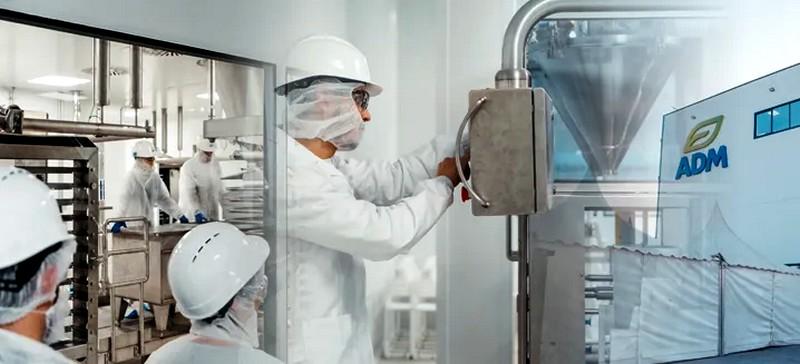 Micro Ingredients
Micro Ingredients
3+ MIN
28/06/2023
ADM opens most innovative probiotics and postbiotics plant in Valencia
The American human and pet nutrition company ADM has opened its most innovative production plant in Valencia. With an investment of over 30 million dollars, the factory will be the first in the world capable of producing probiotics and postbiotics at the same facility. In addition, the new factory represents a five-fold increase in the company's production capacity.
The aim of the new plant is to meet the growing worldwide demand for probiotics and postbiotics, as part of ADM's expansion strategy in the health and wellness sector. It will thus contribute to the multinational firm's target of boosting revenue in this division from 500 million dollars at the close of 2022 to over 2 billion in the next ten years.
University R&D laboratory
The factory is located close to the company's R&D centre at the University of Valencia Science Park, facilities where scientists carry out activities such as next-generation genome sequencing and early-stage testing of new bacterial strains.
The commissioning of the Valencian factory will enable the company to produce 50 metric tonnes per year. From there it will supply the probiotic and postbiotic markets in the United States, Asia-Pacific and Europe. The company intends to triple its customer base over the next five years.
Science-based research
Health and wellness division president Mark Lotsch said that his business area is 'one of the three enduring trends powering ADM's growth strategy: consumers are increasingly aware of the role their gut microbiome can play in their everyday lives, and they're seeking nutrition solutions that are backed up by science-based research'.
The company alluded to a Euromonitor market research study that estimates that the probiotic supplements retail market could surge to 10.4 billion dollars by 2027, compared to its turnover of 8.3 billion in 2022. Lotsch added that this growth is being driven by the rising demand for science-based probiotic formulas that are used in dietary supplements, as well as dairy products, food and healthy snacks and beverages, and in addition to pet and animal well-being products.
ADM, one of the world's leaders in science-backed nutrition solutions, has opened a new production facility in Valencia, Spain to help meet rising global demand for probiotics, post-biotics and other products that support health and well-being
The production facility represents an investment in excess of 30 mio dollars and a more than five-fold increase in ADM's production capacity, increasing it to 50 metric tons per year. The facility will allow ADM to supply growing markets for probiotics and postbiotics in the US, Asia-Pacific and Europe, states the company.
ADM expects its customer base will more than triple over the next five years as more people recognise the links between the gut microbiome and many aspects of health, and look for products tailored to their specific needs. The facility, the world's first to produce both probiotics and postbiotics at the same site according to ADM, will help the company fulfil its expansion strategy in the health and well-being sector. ADM is on its way to realising its ambition of increasing health and wellness revenue from over 500 million dollars in 2022 to 2 bn dollars within 10 years.
The site will produce ADM's probiotic BPL1 and the heat-treated BPL1 postbiotic, as well as other ADM proprietary strains, supplying a broad range of customers. It will also be able to support further growth in ADM's UK-leading Bio-Kult brand of products. The new facility is located close to ADM's pioneering research and development centre in the University of Valencia Scientific Park, where ADM scientists undertake activity including next-generation genome sequencing and early-stage testing of new bacterial strains.
By ADM
 Animal Origin
Animal Origin
3+ MIN
26/06/2023
BRF Pet bets on the natural Super Premium Category
The plant located in Ivoti, Rio Grande Sul, concentrates the production of the brand's feed, which bets on the natural super premium concept. In addition to it, other of the 20 lines in the portfolio are also manufactured on site.
The flag's differential, which is the use of fresh ingredients, is present in the choice of suppliers, in the transport of the finished product. This differential strictly follows a market trend.
Multispecies families boost natural market
Previously seen as a trend for the future, natural pet food has already become a current demand. In the North American market, for example, 37% of pet parents already opt for natural feed.
In addition, the humanization of pets has interfered, including the choice of ingredients for th eproduction of pet food
BRF Pet in numbers
Biofresh's journey begins before the arrival of BRF Pet. The brand belonged to HercoSul, which was acquired by the native food company in 2021. Another step in the expansion was the purchase, at the same time, of Mogiana, which is part of the current portfolio.
As a whole, the conglomerate counts with 1,300 employees, 48 of whom have been working with the company for two decades or more, and 30% of the total staff are women.
With regard to production structures, the company hcounts with five industrial plants, four in Brazil and one in Paraguay. There is even potential for expansion. 'This is a consequence of market demand. We occupy the leadership in the segment. but we are always looking for opportunities to continue growing', says Denis Nakashima, head of marketing at BRF Pet .
If there is a desire to lead the feed segment in the future, in an extract from it, this objective has already been achieved. With its brands in the super premium natural segment, Biofresh and Guabi Natural, BRF is already at the top of the market.
Among the two dozen brands produced, there are some that are exclusive to the foreign market. The company exports to more than 20 countries, including markets such as Russia, Nigeria and Oman. But the Latin American market is the main target, where it operates in 11 countries.
Biofresh serves 3,600 pets. In the second half of 2022, the brand showed an increase in real revenue of 26%, compared to the same period of 2021. With the aim of being closer to each of these pets, BRF Pet has its own fleet of 44 vehicles and the help of more than 60 distributors.
On the factory
Once at the manufacturing plant, the products don't even leave the truck before being tested by the company's laboratory. Based on the analyses, which can take hours depending on the content and quantity purchased, the company establishes its first barrier.
Sometimes, entire loads are even returned. 'We already signed return notes that indicated that the cargo would be destined for human consumption', reports Irina Munaro, technology and innovation consultant and responsible for the plant, highlighting the rigor imposed on the analyses.
The machines are present throughout the entire production process – from the grinding of meat to the packaging. Fresh ingredients stay refrigerated until minutes before use.
When filling, a technology used by BRF Pet to ensure greater durability for the products is the injection of nitrogen gas. This gas is responsible for reducing the action of oxygen, which prevents the pet food's oxidation process of pet food.
Duly packaged and ready for being distributed, before the product enters the truck and hits the road, there is still one last step left. The conditions of the vehicle are studied and also the possible presence of pests, which would make transportation unfeasible. Currently, BRF Pet is already experiencing a moment of modernization of its fleet, having recently started its first route served by electric vehicles.
The next innovation in the radar concerns partner distributors: it´s a test that will make it possible to recognize that other loads were loaded in that compartment and, with this information, avoiding any risk of cross contamination.
By Panorama PetVet
 Market Information
Market Information
3+ MIN
22/06/2023
Pet population and prospects for the pet food market of the region
According to these statistical exercises, in Mexico, there are around 60 million dogs and cats (2021), while in Chile, there are 12.5 million dogs and cats within families, and another 4 million which are homeless. These pet population figures represent 47% and 64% of their human population, respectively. This information suggests that there seems to be a significant underestimation of the pet population in other countries in the region, which have not carried out this type of estimation exercise. Local consensus points to relatively conservative population figures. The important point is that pet population underestimation entails costs for each country's pet food industry since medium-term demand planning is carried out with presumably incorrect information. Pet population dynamism is another challenge for manufacturers Even in Mexico and Chile, where there are more accurate estimates of the pet population at the national level, it is difficult to know the dynamics of these populations. The life expectancy of a dog is only 10-13 years, and that of a cat is 12-18 years. In this sense, cat and dog populations move more dynamically than human ones. For example, in just 5 years, the elderly or senior dog population could double in a certain country, and then fall. This way, a pet food manufacturer can see a sudden increase or drop in their products' sales without knowing if it is due to population reasons or another cause. The industry generally relies on present demand to forecast future sales. However, this method ignores the dynamics and nature of the pet population. Hence we see the importance of having, at least, official national estimates of the total pet population. How much can the pet population be underestimated? To estimate the pet population of a country, it is necessary to carry out a census or household survey that is statistically robust and representative of it. Due to the high cost this represents, only governments dare to finance them. Triplethree collected local information in 20 countries, both from veterinary associations as well as from the press and specialized sources. The sum of the consensus in each country yields a total of just over 200 million dogs and cats in the year 2022 in this group of countries. However, with the recent information published in Mexico and Chile, and assuming that the other countries also underestimate their pet populations, the real number of dogs and cats in Latin America can easily exceed 300 million. And this number does not consider animals in street situations. If the pet population is, indeed, being underestimated in the region, the prospects for the pet food market are also poor, not only in terms of the total population but also by age group. I reiterate that the cost of not having this information is substantial for local industries. Even so, the industry is growing One of the reasons that explain the sustained growth of the pet food industry in almost all the regional countries, despite inflation and income vulnerability, is the existence of abundant consumer markets. Millions of cats and dogs are not considered in companies' demand estimates, yet they may become new customers for the industry overnight. Without a doubt, this is good news for the region's pet food industry. In this sense, the window of opportunity extends not only to selling more products but also to innovation through food portfolio diversification. With a presumably underestimated pet population, Latin America can easily become a formulation, ingredient, and format innovation hub. As the pet population suggests, there is plenty of room for further growth. By: Iván Franco Source: All Pet Food Magazine
 Manufacturers
Manufacturers
2+ MIN
21/06/2023
Ancestral philosophy in pet food
Wild is a new line of Ultra Premium food for dogs and cats, in which fresh meat is the protagonist. Our proposal is based on the Ancestral Diet, a new approach in nutrition for dogs and cats that is based on ancestral eating patterns. The entire Wild line has fresh meat as its first ingredient, with formulas high in protein and fat, and low in carbohydrates.
We have created two fresh meat blends that are the brand's flagship: Patagonian Blend for dogs and Atlantic Blend for cats. The Patagonian Blend combines Lamb, Turkey and Chicken, while the Atlantic Blend combines Salmon, Hake and Corvina.
The combination of fresh meats results in a unique product in the Argentine market, with a great opportunity for those pet parents who seek to feed their dogs and cats nutritionally dense, fresh food with superior quality proteins.
Wild differs from other natural proposals on the market for two key points: fresh meat and its "ancestral philosophy". This new concept focuses not only on nutrition, but on the dog or cat bond with its human and the way of life they lead together. The Ancestral Philosophy is based on achieving comprehensive well-being by honoring ancestral ties, that is, respecting the dogs and cats origin. All our blends are made with the best meat and fish, and aim to provide nutrition based on high protein quality, high energy value and a product rich in essential fatty acids.
All our products are made in our plants in Alcira Gigena and Córdoba Capital. We have innovative technology and processes to be able to use differential ingredients such as fresh meat. In addition, we work under strict quality controls that follow international standards.
Wild pates are presented in different formats and also seek to combine functionalities. Within each blend, four pâtés with unique and ancestral recipes stand out. In all of them, high-quality proteins are combined with specific ingredients that determine functionality. In Patagonian Blend, the stars are: Grain Free, Wholesome Grains, Weight Management and Skin & Coat Protection. At Atlantic Blend we have four products: Urinary, Hairball, Outdoor and High Protein. We seek to combine ingredients in new ways, with a clear objective: to achieve a different experience.
Wild belongs to our Ultra Premium line called Sieger Signature. This seal is synonymous with innovation, and presents advanced technology nutritional proposals under its endorsement. Currently, under this seal, Homemade Delights with homemade recipes and Wild with ancestral recipes are commercialized.
The love for our dogs and cats is the engine that drives us to continue researching to create the healthiest nutritional experiences.
ALICAN – More than a decade nourishing pets
Alican is a company dedicated to the balanced pet food production. Its main goal is to satisfy the customers demand and contribute to improving the pets lives, with certified high-quality products.
By: Alican
Source: All Pet Food
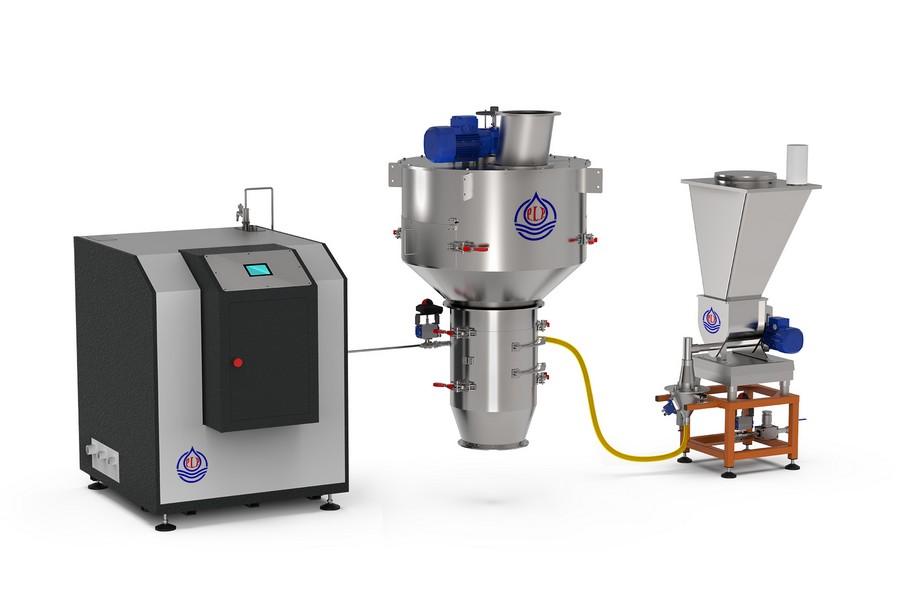 Coating
Coating
2+ MIN
20/06/2023
MASS SPIN COATER - Revolutionary patented system
The pet has become a true member of the family and the end customer, his owner, is increasingly oriented towards high-quality food in terms of well-being, quality and pleasure. PLP takes up this challenge by developing systems that can translate market needs into real products. The treatment and coating system, patented as MASS SPIN COATER, is the new and revolutionary system for coating and adding additives onto solid products. Through an integrated torsion transducer and a processor of Coriolis force data, the MSC is capable of identifying the mass delivery rate of solid prodcts (pelets, flours , croquettes). This permits a proportional control for adding doses of additives for the process. The MSC guarantees the uniformity of the finish products and thanks to reduced dimensions and weight, installation is made easy at any point of the system, be it on the transport piping in the drop, or at the end of production directly onto the vehicle load. It is used for applying either powder or liquid additives: - Fat : for adding vegetable oils or fat in general. For adding molasses and other products largely used on the finished products - Enzymes : for adding liquid enzymes and powder enzymes directly onto the finished product, to avoid cross contamination between the various products and to avoid waste due to degradation of the enzymes during the production of feed. - Powder condensation : Fine powders, in an environment saturated with the same, cause serious problems such as explosions and subsequent fires , as well as serious respiratory problems for personnel and, last but not least, damage to the plant. which remain in the production cycle without creating further problems - Humidification: For the treatment of humidification in raw materials with the addition of water and acidifiers with retroactive checks of humidity present in cereals - Treatment after pelletizing : The addition of medicines in the production of feed is normally carried out in the mixing pase with contamination problems and loss of active ingredients due to mechanical and thermal stresses. With the MSC it is possible to add antibiotics, coccidiostats, vitamins etc, whether in liquid or powder form. This process is possible thanks of the utilization of Seal4feed , a filming product from ARDA Innovations product of ARDA INNOVATIONS. by PLP System Source: All Pet Food
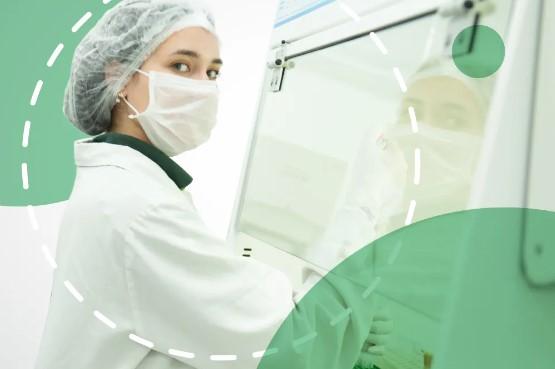 Market Information
Market Information
5+ MIN
16/06/2023
Advancing Pet Food: Biotechnology's role in enhancing quality and sustainability
The word "biotechnology" can be divided into two parts where "bio" refers to living organisms such as cells, bacteria, yeast, and plants, and "technology" refers to the practical application of scientific knowledge. Biotechnology is a multidisciplinary field that utilizes living organisms, biological systems, and processes to develop products and technologies that benefit society. The process involved in obtaining additives from yeast generally involves five stages (strain selection, cultivation, fermentation, purification, and drying), which may vary depending on the purpose of the product (protein source, prebiotic, flavor enhancer, among others). The application of biotechnology in this context has the potential to improve the quality, nutrition, and sustainability of pet foods, contributing to the health and well-being of the animal. We can mention some ways in which biotechnology in yeast production can add value to pet foods: Nutritional quality: the possibility of applying different processes to yeast to make specific nutrients available, such as making protein more accessible through hydrolysis, increasing the production of vitamins, minerals, or essential fatty acids in yeast. Digestibility: Yeast-derived products can aid in the breakdown and absorption of nutrients, as well as the availability of nutrients. Production of functional compounds: Assisting in the production of specific functional compounds that offer health benefits. Alternative and sustainable ingredients: Production of alternative and sustainable ingredients for the food industry. Customization of food: It is possible to develop yeast that produces specific compounds based on individual needs according to the specific characteristics and conditions of each animal, providing a more suitable and personalized diet. Combining advances in biotechnology with the nutritional and health needs of pets, it is possible to develop healthier, sustainable and personalized foods to meet the demands of pet owners. Biorigin has stood out in this field for over 20 years, bringing different biotechnologies that provide different benefits to yeast, including: Protein source: Yeast is an excellent source of high-quality protein with great sustainable potential. Commonly, we have dried inactive yeast (NutriCell) and hydrolyzed yeast (HiCell). It contains a good variety of essential amino acids necessary for the health of pets. Adding yeast to pet food helps increase protein content and improve overall nutritional quality. Vitamins and minerals: Yeast is a natural source of various essential vitamins and minerals. It contains B-complex vitamins such as thiamine, riboflavin, niacin, and folic acid, which play vital roles in metabolism and the nervous system of animals. Additionally, yeast is rich in minerals like zinc, selenium, and chromium, which are important for overall pet health. Palatability and flavor: Yeast has an appealing taste for many pets. It can be used as a natural ingredient to enhance the palatability of food and encourage pets to eat. Adding yeast to food aids in flavor enhancement (PalaUp), which is especially useful for picky eaters or those with reduced appetite. For example, by optimizing sugar and specific amino acid consumption and utilization, they can ensure that an appropriate amount of sugars is available for the Maillard reaction, resulting in the development of desirable flavor compounds or the presence of nucleotides, that enhance flavor by contributing to the umami taste, synergistically interacting with other taste compounds, stimulating taste receptors, and reducing the need for excessive salt or fat. To apply yeast extract, it can consider including it in the formula directly in the dough or as a coating, along with the palatant, in various pet food formats ranging from dry extruded diets to nutraceutical compounds. Fiber and intestinal health: Yeast contains soluble and insoluble fibers, which are beneficial for the intestinal health of pets. Fiber assists in regulating intestinal transit, promotes colon health, and helps form healthy stools. Mannanoligosaccharides (MOS) are derived from the cell walls of yeast that support gut health in pets by promoting the growth of beneficial bacteria and improving digestive function. Moreover, the fiber present in yeast can act as a prebiotic (ActiveMOS and HyperGen), stimulating the growth of beneficial bacteria in the gut and promoting a balanced gut microbiota. It is important to mention that MOS and beta-glucan are both carbohydrates with distinct structures and functions. MOS primarily supports gut health and digestion by promoting beneficial gut bacteria, while beta-glucan focuses on immune modulation and enhancing immune responses. Their applications in pet food and supplements differ based on their specific benefits and mechanisms of action. Immune support: Yeast contains bioactive compounds like β-glucans, which have immunomodulatory properties (Macrogard). These compounds can help strengthen the immune system of pets, making them more resistant to infections and diseases. Including β-glucans in pet food provide immune support, modulates inflammation, manages allergies and atopy, promotes gastrointestinal health, potentially in cancer management, benefits cardiovascular health, and may support cognitive function in aging pets. Macrogard from Biorigin, is recognized worldwide and has extensive scientific evidence of its effectiveness. The biotechnology applied to Macrogard gives it a high content of bioactive beta-glucans, and the maintenance of the original structure of this molecule has recently been proven to have an additional function for dogs. In a recent study, Ferreira et al. (2022) demonstrated the beneficial effect of Macrogard in overweight dogs with insulin resistance. The beta-glucan can be applied in some ways, including as a supplement for immune support, in functional treats or chews for dental health and immune enhancement, in topical products for skin and coat health, in specialized diets for allergy management, and in formulations for specific health conditions such as joint health or gastrointestinal support. It is important to note that not all yeasts used in pet foods are the same. Some specific forms of yeast, such as brewer's yeast or inactivated Saccharomyces cerevisiae yeast, are more commonly used due to their nutritional properties and health benefits. The application of biotechnology in yeast production for pet food offers numerous benefits. It allows for the customization of food, improves nutritional quality, enhances digestibility, promotes the production of functional compounds, and provides sustainable and alternative ingredients. By harnessing the power of biotechnology, we can create healthier, more tailored, and sustainable pet food options that support the well-being of our beloved animal companions. With ongoing advancements in biotechnology, the future holds exciting possibilities for further innovation in pet food production, ensuring that our pets receive the best nutrition for a happy and healthy life. By: Robson Barducci - R&D Specialist at Biorigin Anderson Dias Leticia Pacheco
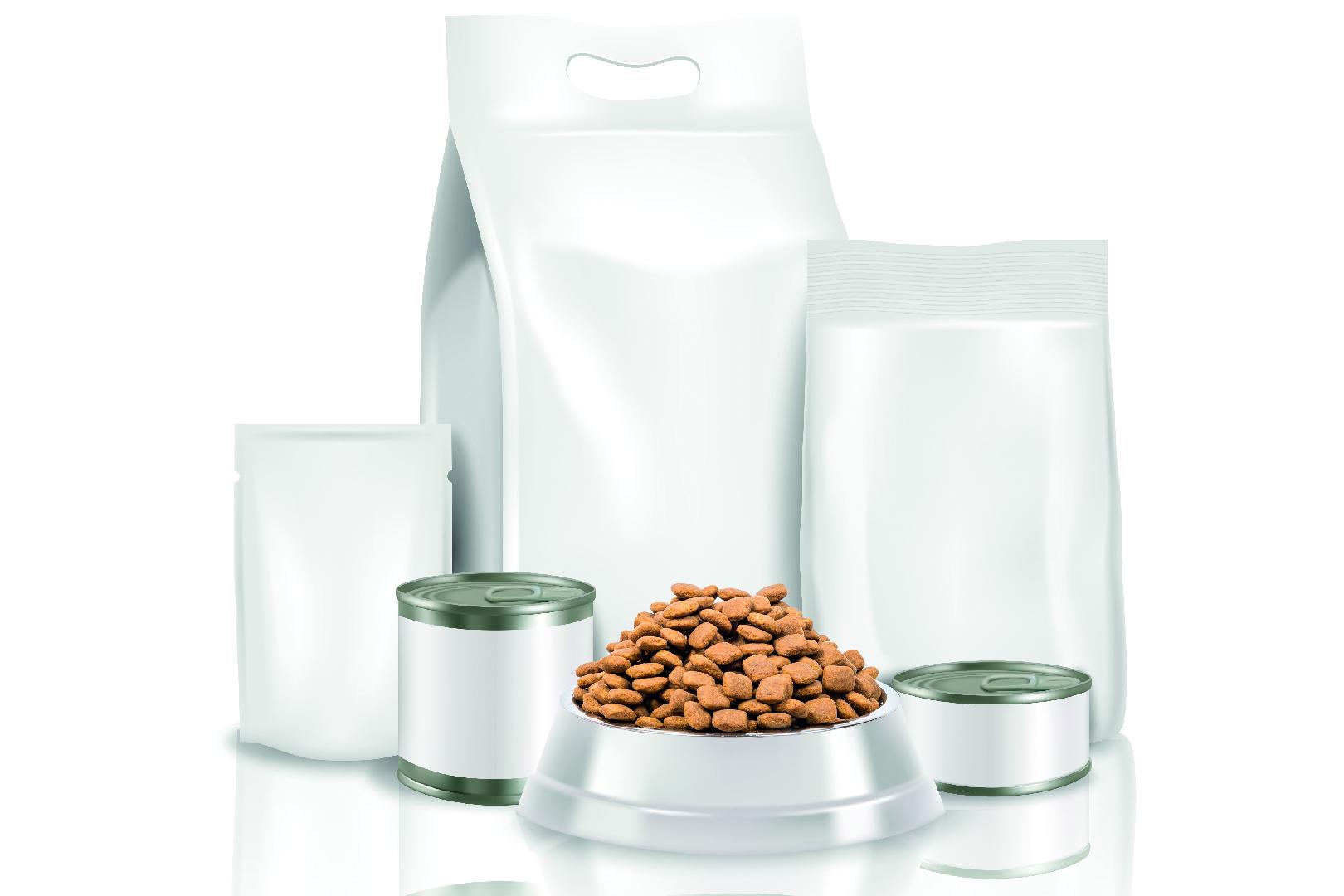 Labels
Labels
4+ MIN
15/06/2023
Por María Candelaria Carbajo
Clean labels: the bridge to a more transparent industry
In recent years, consumers have become much more conscious about the care of their pets and, consequently, about the products they offer for their nutrition. The industry, then, has to ensure its products are of good quality and made with ingredients that people easily accept when reading the labels. What are we talking about when we talk about clean labels? When pet owners read, a few years ago, the ingredients on the pet food labels they chose, they used to find, for the most part, complex terms that made them lose confidence about the quality of said food for their pets. Today, with this trend, we are facing a slow and progressive change, which jeopardizes what has been sustained up to now and requires the industry to offer new alternatives. Thus, the clean-label trend arises to calm people's fear of harmful chemical equations, incomprehensible terms, and complex compositions. It's all about perception One of the most significant challenges facing this trend is that there is no single perception of what clean-label food really is. While we all understand that it would be a transparent and easy-to-understand label, for some consumers it may mean short and simple recipes with few synthetic vitamins, preservatives, and other artificial ingredients. For others, it may be discovering a product made from 100% natural ingredients with no artificial preservatives, non-grain carbohydrate sources, non-GMO ingredients, natural colors and flavors, limited ingredient diets, by-product-free protein sources, vegan ingredients, or locally sourced, for example. According to reports from the International Food Information Council (IFIC), almost 2 out of 3 participants believe ingredients influence their purchasing decisions. Meanwhile, according to a BIS Research study, the global market for clean-label ingredients was valued at $19.77 billion in 2020, and it's expected to reach $32.08 billion by 2026. With these predictions, it is clear that clean-label ingredients are the food industry's alternative to the growing consumer demand for consumables without questionable ingredients. The importance of clean labels (and their ingredients) The transparency of the ingredients and their description on the labels lies in openly sharing the sources of the substances used in food and the practices followed to obtain them. Today's consumers know they have the right to know all the information they want about food ingredients. The plain consequence of this market demand is a late increase in sales of organic products and a decrease in processed foods or foods with artificial additives. This, in turn, is reflected in 'free from' style labels or stamps on product packaging that have had to be reformulated to come as close to natural as possible, avoiding adulterated or artificial ingredients as much as possible. In this sense, new technologies and food science are playing a significant role in helping manufacturers innovate their solutions to go to market with more transparent products and labels. Clean-label challenges Inevitably, to ensure clean label ingredients maintain and expand their reach, flavor, and product developers began paying more attention to nutritional profiles. Leaving the known behind Some formulas will be easier to modify and adjust than others. Transforming a current product may require various adjustments and validation processes, since changing preservatives is not the same as eliminating, for example, a main source of protein or carbohydrates. In many cases, what begins as a small modification ends in a product requalification and almost a total redesign. For other ingredient categories, such as colorants, the alternatives may be limited. However, we already find companies working on finding solutions to this challenge. Color additive suppliers are already developing natural alternatives to currently certified pigments, such as caramel colorants which, while perfectly compliant with the clean-label category, only achieve a certain level of darkness. Naming what is needed Another industry challenge is related to the vitamins, minerals, and other nutrients necessary for a complete and balanced pet diet. Most owners prefer ingredients they recognize and can pronounce, which is why the most difficult ingredients to tackle are vitamins and minerals, but the truth is that pets require them, as well as specific bioavailable fatty acids and amino acids for a complete and healthy diet. In this regard, the AAFCO requires that supplemental vitamins and minerals are included in the packages with the approved names, and although some may be difficult to recognize, perhaps the best option, in this case, is to educate people on their importance. On the other hand, we can mention the difficulty that arises when it comes to achieving a clean label on wet foods since these usually contain guar, cassia, or xanthan hydrocolloids, carrageenan, or carob, profitable alternatives to achieve the proper viscosity in these foods. However, with the increase in demand for natural and recognizable ingredients in packaging, more and more manufacturers are looking to replace these gums with clean-label ingredients, such as rice starch. Challenge accepted: clean and transparent labels (and products) Reformulating a pet food product to meet clean-label criteria can take considerable time to have it validated and ready for launching to the market. New ingredient qualification, establishing long-term viable material supply chains, and quality control validation of the final product design are some of the critical steps that affect the redesign process. The positive thing about this request for ingredients that satisfy the demanding preferences of new pet owners is that it has allowed industry suppliers to innovate and work to offer healthier and more transparent solutions. Source: All Pet Food Magazine
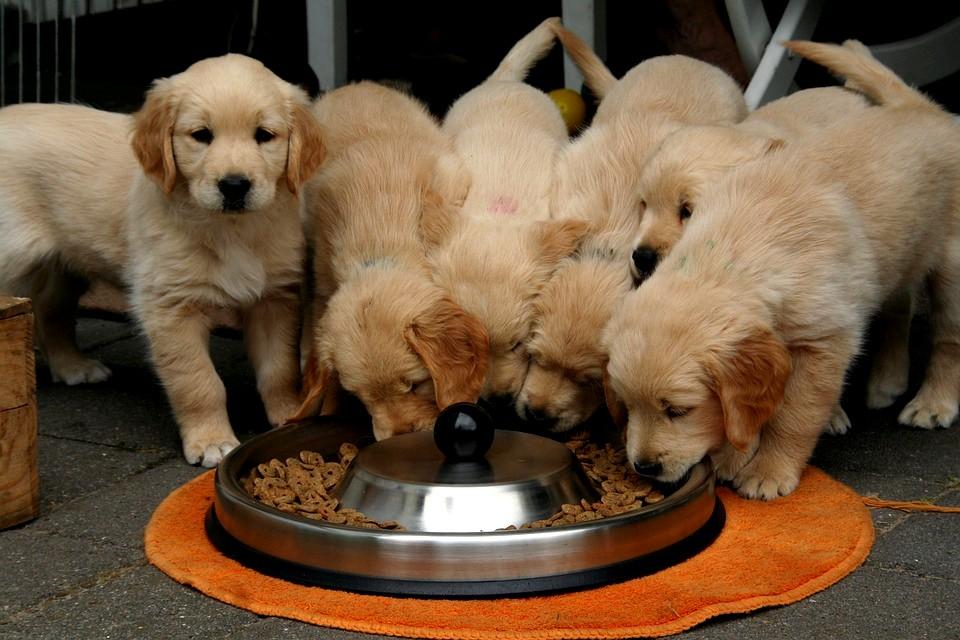 Minerals
Minerals
3+ MIN
14/06/2023
What Nutrients are Essential for My Pet?
Here's a breakdown of all the essential nutrients according to the Association of American Feed Control Officials (AAFCO) that are required for foods to be called complete and balanced for adult and growing cats and dogs. Included are also links to other blog posts that describe some of these nutrients and why they're essential.
Protein and Amino Acids
While the amount may differ between dogs and cats, and between adults and seniors, all pets have a minimum requirement for protein to make muscle in the body and help in many important body functions. Amino acids are the building blocks of protein and there are approximately a dozen essential amino acids in addition to a minimum of overall protein that all pets need:
Arginine
Histidine
Isoleucine
Leucine
Lysine
Methionine
Cystine
Phenylalanine
Threonine
Tryptophan
Valine
Taurine (cats)
Fats and Fatty Acids
All pets have a minimum amount of total fat that they need in their diet and there are also some specific types of fatty acids that are also required for different lifestages. Overall fats and specific types of fatty acids help your pet maintain a healthy skin/coat, regulate inflammation, and aid in development in growing pets.
Linoleic Acid
Arachidonic Acid (cats)
Alpha-Linoleic Acid (growth)
EPA + DHA (growth)
Minerals
Minerals, some of which are also called electrolytes, are critical to keeping fluid balance, growing and maintaining bones, and helping to regulate many processes running in a pet's body, such as movement of muscles. The amounts required can vary between growing and adult animals, and there is also a required ratio of certain minerals such as calcium and phosphorus for optimal health, especially for growing large breed puppies.
Calcium
Phosphorus
Potassium
Sodium
Chloride
Magnesium
Iron
Copper
Manganese
Zinc
Iodine
Selenium
Vitamins
Cats and dogs require many of the same vitamins as we do (except for Vitamin C, which they can make themselves!), but the amounts can be very different. One example is Vitamin D, where dogs need less than 1/10th the amount that humans do, so we have to be very careful about using human products (or any supplements for that matter!) in pets to avoid toxic amounts of vitamin D. Vitamins perform many functions in the body from supporting the immune system to breaking down food for energy, and are either water soluble (the B vitamins) or fat soluble (vitamins A, D, E and K). The essential vitamins for dogs and cats are listed below with common alternate names that you may see on your pet food ingredient lists.
Vitamin A (retinol)
Vitamin D (cholecalciferol)
Vitamin E (tocopherol)
Vitamin K (phylloguinone, cats)
Thiamine (Vitamin B1)
Riboflavin (Vitamin B2)
Niacin (Vitamin B3)
Pantothenic Acid (Vitamin B5)
Pyridoxine (Vitamin B6)
Folic Acid/Folate (Vitamin B9)
Vitamin B12 (Cobalamin)
Choline
Where Can I Go To Learn More?
If you'd like to learn more about the exact amounts required of these nutrients in different lifestages and species, booklets are also available online from the National Resource Council with more details on each of these essential nutrients for dogs and cats.
How Do I Know My Pet Is Getting All These Nutrients?
Foods that have AAFCO nutritional adequacy statements that state they are complete and balanced have to include all these essential nutrients and stay between the minimum requirements and any maximums. Providing extra through supplements may actually harm your pet because you may unknowingly be providing a toxic amount of some nutrients that have narrow safety ranges! We recommend only giving supplements with any of these essential nutrients when recommended specifically by your veterinarian.
by Deborah E. Linder, DVM, MS, DACVIM (Nutrition)
 Vitamins
Vitamins
3+ MIN
09/06/2023
How important is choline for cats
Choline is a vitamin-like component that plays an important role in liver health and nerve transmission, and thereby also cognitive function and muscle function in cats. As said above, cats produce some choline naturally, but due to its importance, pet food brands are advised to add this nutrient into the food. Krill – a natural source of phosphatidylcholine Choline is available in various forms, choline chloride, lecithin, or choline bitartrate. The commonly used one is choline chloride which is 12 times less bioavailable than the choline found in krill (phosphatidylcholine) Krill meal is made from Antarctic krill (Euphausia Superba), which is a crustacean related to shrimp. The choline found in krill is all-natural and in form of phosphatidylcholine. Krill is also rich in phospholipid omega-3s, marine proteins, and astaxanthin. herefore, one of the ways to increase choline intake in cats is to include in their diet a pet food with krill meal, which provides choline. Choline - an essential nutrient for cats In 2018, a survey of the Association for Pet Obesity Prevention estimated that 60% of cats and 56% of dogs in the United States were overweight or obese. This has serious health consequences for pets, including fat accumulation in the liver. A balanced, healthy diet for cats accompanied by regular physical activity is essential for overall health. In addition, nutritional supplements may help to reduce the risk of weight-related issues or optimize nutrition for cats. One way to do that is to provide cats with pet food with krill meal containing choline in the form of phosphatidylcholine. Phosphatidylcholine is one of the most fundamental molecules that make up the living cell. Being an essential component of the cell membrane, it is also the most abundant in a class of phospholipids known as 'essential phospholipids', as it forms the structural barrier that surrounds the cell. Choline and its metabolites have multiple physiological roles in the body which are important for the building of cell membranes, liver fat transport to prevent fatty liver, nerve impulse transmission in brain and muscles, and provision of methyl groups that maintain liver, heart, and kidney health. What is choline essential for? 1. Building of cell membranes Phosphatidylcholine is an integral part of almost every cell in the animal body, being a major constituent of cell membranes. It's also important for normal cellular membrane composition and repair. Its role in cell membrane integrity is vital to all basic biological processes such as the information flow within cells from DNA to RNA to proteins. 2. Liver fat transport to prevent fatty liver Choline improves and maintains a healthy liver function and can aid in the proper metabolism of fat. In other words, choline is very important for the proper functioning and regulation of the liver and gallbladder. This vitamin-like substance aids in hormone production and minimizes fat accumulation in the liver by regulating fat and cholesterol metabolism. 3. Nerve impulse transmission in the brain and muscles Choline is needed for the proper transmission of nerve impulses and is a constituent of acetylcholine, the major neurotransmitter. This is essential in supporting brain development, the learning process, the nerve transmitters and affects the overall mental well-being of pets. 4. Providing methyl groups that maintain liver, heart, and kidney health Being a structural element of cell membranes (as phosphatidylcholine), choline supports lipid transport and acts as a source of methyl groups (after it is transformed into betaine) for various chemical reactions in the body. By controlling protein function and gene expression, choline is important for the proper function of the heart and blood vessels, nerve system, liver and reproduction. Therefore, we can say that choline in the form of phosphatidylcholine is an essential nutrient that cats require for a healthy and happy life. It supports muscle function, cognitive function and memory, it helps maintain normal cholesterol values, and protecting the liver from toxicity (without phosphatidylcholine, fat and cholesterol accumulate in the liver due to reduced low-density lipoprotein levels). Moreover, choline can prevent the appearance of the fatty liver syndrome and also support normal liver function. It can reduce insulin requirements in cats with diabetes, and diminishes seizure frequency, being important in the treatment of epilepsy. By Qrill Pet
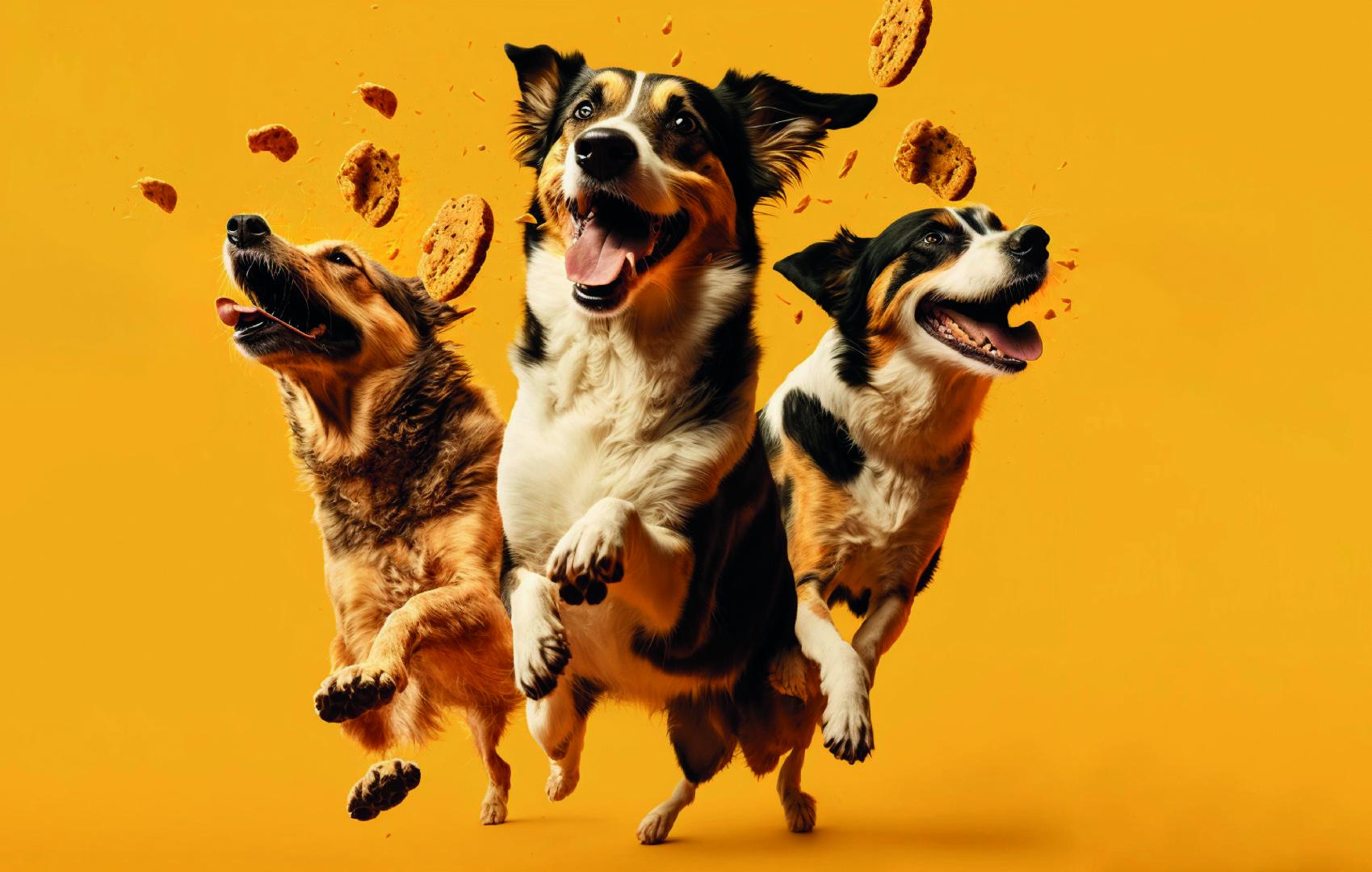 Market Information
Market Information
3+ MIN
08/06/2023
Por Armando Enriquez de la Fuente Blanquet
What are the bases for the marketing of my pet food?
Everything starts with an objective or a dream, but it will be necessary to focus on it, starting with the task of carrying out a detailed market investigation, such as knowing what the data on pet populations are (graph 1), among many other pieces of information. This is how we begin to define the market category, type of product, in which market segment we are going to operate, what my value promise will be, with whom I will be competing, etc. Graph 1. The population of pets in Mexico 2022 (Millions). Source: Triple Three And what will be the marketing strategy to be developed? For Philip Kotler, the so-called father of marketing, the concept of marketing is simple: "Marketing is defined as the science and art of exploring, creating and delivering value to satisfy the needs of a target market, for a benefit." The first step for a new product will be to build a brand. The key to building a brand is to have something good to deploy intelligently. 'Something good' can be considered an innovation. As I mentioned in AllPetfood magazine, November 2022 edition, innovation in pet food is making use of creativity, which means that we don't need a new process or ingredient, but instead, use what we have efficiently to comply with the statement that the pet parent looks for. Pet owners not only look for nutritional levels (protein content, fat, etc.), the specification of the ingredients (meat as protein of animal origin), and the attributes that will give the pet a better quality of life (longevity, vitality, etc.) or innovations (dehydrated, "grain-free," etc.). They are concerned about giving your furry children the best experience. Our new brand will not be a product for all segments or all parents, and, at first, it will be almost invisible. The latter is positive because it will be out of the radar of the competition. The pet food market has a unique feature: the "pet humanization" trend. Today, 50% of family photos include a pet, as it is one more family member. Young people adopt a dog or cat because they don't want children—or it takes longer to have them—and older adults buy a pet for company. In both cases, there is a strong bond of esteem towards them. Here we enter the second step: we must understand and choose the consumer we want to serve, our customer. Our target pet parent has certain tastes and needs, as well as shopping habits, media, and even different degrees of care for their pet (Image 1). Our focus will be to position the brand as different and superior. Do not seek to be in a segment in which you are not superior. Here another strong trend can be considered: food premiumization. Pet parents look for food that offers the greatest well-being and health to their pets. My brand must be delivering on functional characteristics and emotional appeal, as new pet owners are embracing a holistic view of wellness and health, with higher-quality food. Image 1. Generations by age We have already managed to position our brand, and we are entering the next step, staying ahead of the competition before they copy our value proposition. Any differentiator you own will be imitated by others. You have to think about staying in business with new ideas, different concepts, and constant innovation. Let's remember that the pet food market is aligned in many areas with the human food market. It is an experience design marketplace. So, beyond thinking about looking for new ingredients or new molecules such as type II collagens or highly bioavailable polyphenols, we must think about making our product an experience for the pet parent. Therefore, successful marketing must have branding, focus, positioning, and differentiation. By: Armando Enriquez de la Fuente Blanquet Source: All Pet Food Magazine
 Coating
Coating
4+ MIN
07/06/2023
5 Essential Pet Food Manufacturing Equipment Types
Being able to reliably, affordably and easily feed our pets has been an important part of our ongoing relationships with our pets. In the modern industrial era, several types of pet food manufacturing equipment have played a key role in widely distributing pet food. Let's take a closer look at the essential pet food manufacturing equipment supporting the pet food industry today. 5 Essential Pet Food Manufacturing Equipment Types Today, there are many different types of pet food. This includes a wide range of pet types, from fish to birds to rodents to cats and dogs and many more, as well as many different types of food, including wet food, dry food, canned food, fresh food, and more. Different types of pet food utilize many different ingredients, processes and pet food manufacturing equipment. In this blog post we'll take a look at a few of the most essential processes. A startling 25% of Americans added a pet to their home in 2020. This was an especially difficult year, indicating that many of us rely on our pets for companionship and comfort. During this time, US pet food sales rose 10%, with e-commerce sales rising sharply. Increasingly, pet owners are seeing their pets as family members, which can have numerous benefits, mostly linked to reduced stress and loneliness. With bonds between people and pets growing stronger, an increasing number of pet owners are looking for high-quality and speciality pet foods, including wet food and refrigerated food. However, dry pet food like kibble still remains the dominant type, accounting for 57% of pet food sales. Since cats and dogs are still by far the most popular type of pet, we'll mainly discuss the essential pet food manufacturing equipment for dry dog and cat food. Mixers Industrial mixing is one of the most important types of food processing equipment, including pet food. Large-scale mixers make it possible to mix ingredients quickly, efficiently, and uniformly, processing 5, 10, even 15 tons of material at one time. These mixers are also capable of working with a wide range of materials, including very fine powders to thick liquids and tough solids. For pet food processing, mixers can be important at several points, from mixing cornmeal and other grains to oils and fats, meat-based products, and more. Without large-scale pet food mixers, it would be difficult to process the amount of food we would need to reliably and affordably feed our pets. Extruders Extruders push mixed material, usually a dough or a paste, through a metal die to create uniform pieces. Extruders are important pet food processing equipment because they make it easy to create food that is easy to package, ship, and store. Extruders also create nutritionally uniform pellets, removing the guesswork in balancing protein, fats, carbohydrates, vitamins and minerals. In addition, these pellets are easy to work with, so they can be easily coated with flavorings and fats. Spray Coating Adding fats and flavorings to kibble is important for making the food palatable for pets, but it's also important to ensure that the pets get the right amount of fats, vitamins and minerals in their diet. Spray coating makes it easy to add liquid coatings to pellets. This process is both fast and efficient, so the pellets can move through the process quickly and get to packaging and then on to the customer and their pet. Mist Coating Mist coating takes liquid coating one step further, making it even easier and faster to apply liquid coatings to pellets. Mist coating equipment uses an atomizing system which turns liquid coatings into a fine mist, which evenly coats the material as it falls through the coating chamber. When comparing liquid coating systems, mist coating is one of the most efficient methods, since it provides more even coating, reduces waste, requires less clean-up, and tends to be gentler on the pellets, decreasing breakage and loss. Track and Tracing Track and tracing systems, which can include a wide range of equipment, are essential to all modern-day food systems, and pet food is no exception. By tracking materials and finished products through each process, and then on to retailers and customers, it's possible to detect where contamination exists, and stop contaminated products before they do more damage. Though other processes are designed to kill bacteria and tests are designed to detect dangerous chemicals, no process is 100% effective. When bacteria or other dangers make their way into pet food, track and trace systems can show where the contamination came from, and pull the contaminated goods from the shelf as quickly as possible. by APEC Source: All Pet Food
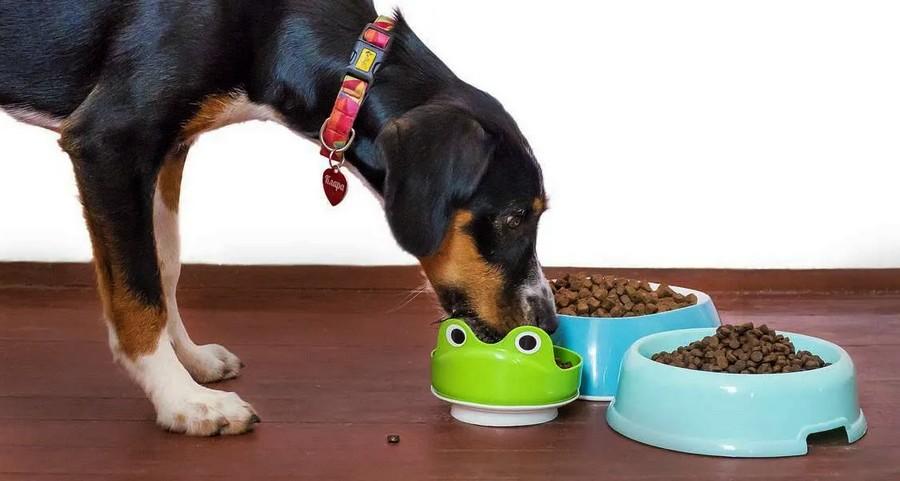 Vegetable Origin
Vegetable Origin
4+ MIN
06/06/2023
‘Peas of Mind’: Pulse Ingredients in Dog Food Not Linked to Heart Problems, Says New U of G Research
It's a reassuring finding for dog owners worried about grain-free diets, which have surged in popularity and now make up almost half of the dog food market in Canada. The diets have been under scrutiny after 'pulses' – the collective term used for peas, lentils and beans – became associated with a serious heart condition in dogs called dilated cardiomyopathy, or DCM.
This latest U of G research, which appears this month in The Journal of Nutrition, found that dogs fed diets containing up to 45 per cent whole pulse ingredients and no grains over 20 weeks showed no indications of heart issues.
As well, the dogs' body composition altered less than 0.1 per cent from baseline no matter which diet they were on, suggesting they also maintained lean body mass.
'This study is the longest, controlled feeding study to date to assess cardiometabolic health in healthy adult dogs fed pulse-inclusive diets,' said lead author Dr. Kate Shoveller, a professor in the Department of Animal Biosciences in the Ontario Agricultural College and Champion Petfoods Chair in Canine and Feline Nutrition, Physiology and Metabolism.
Dr. Adronie Verbrugghe, clinical studies professor and Royal Canin Veterinary Diets Endowed Chair in Canine and Feline Clinical Nutrition at the Ontario Veterinary College (OVC), added: 'This research is important to help veterinarians make evidence-based diet recommendations for their patients. Some dogs might be healthy, but others could have specific health conditions for which protein sources and content are targeted.'
Pulses a dependable protein alternative in pet food
Pulses are an attractive protein source in pet foods and need to be included in plant-based dog food formulations to provide sufficient dietary protein. Yet there have been concerns pulses may be limited in key amino acids for the body to make taurine, needed for proper heart.
Poor bioavailability of key amino acids has also been linked to inadequate protein absorption and muscle wasting in dogs.
To investigate the potential effects of pulse ingredients on cardiac function of healthy dogs, the researchers recruited 28 Siberian huskies for a randomized, controlled trial. Huskies are not genetically at risk of DCM, meaning any changes to their heart health would reflect diet, not genetics.
Each dog was assigned to a diet containing either zero, 15, 30 or 45 per cent whole pulse ingredients, specifically green and yellow peas, pinto beans, chickpeas and lentils. All diets included chicken as the animal protein source and were formulated with the same protein and fat levels.
All pulse ingredient concentrations reflected current formulas in commercial dog foods, said lead author Pawanpreet Singh, a U of G PhD student in animal biosciences.
'We wanted to keep all aspects of the diets the same except the amount of pulse ingredients so that any changes we saw in the dogs' cardiac function could be attributed to the differing amounts of pulses and not nutrient intake,' said Singh
No changes to dogs' body composition or heart function
Champion Petfoods funded the study and all experimental diets were processed in its facilities. The company did not influence the findings or conclusions of the study. Echocardiograms were performed by veterinary cardiologist Dr. Shari Raheb, a professor in OVC's Department of Clinical Studies, to detect heart changes. Singh routinely collected blood samples to assess cardiac biomarkers or amino acid changes.
Verbrugghe and registered veterinary technician Shoshana Verton-Shaw performed scans to assess body composition at the beginning and end of the study, and all dogs were weighed every week.
'We took the highest precautions to monitor the health of these dogs. We made sure to conduct monthly health checks and evaluate their heart blood markers to make sure there were no signs of cardiac stress,' said Singh. 'We found that regardless of the amount of pulses consumed, none of the dogs showed changes to indicate the development of DCM or body composition changes.'
Shoveller said previous clinical studies were not able to pinpoint whether pulse ingredients played a role in DCM in dogs not genetically predisposed. 'Our data suggest the inclusion of pulse ingredients in dog food is not a causative factor and emphasizes the importance of understanding the nutrient composition of each ingredient and ensuring that foods exceed minimum nutrient requirements,' she said.
'Ultimately, pulses are a dependable protein alternative in the food industry and this study emphasizes their safety even when incorporated at high concentrations.'
Contact: Dr. Kate Shoveller
[email protected]
All Pet Food
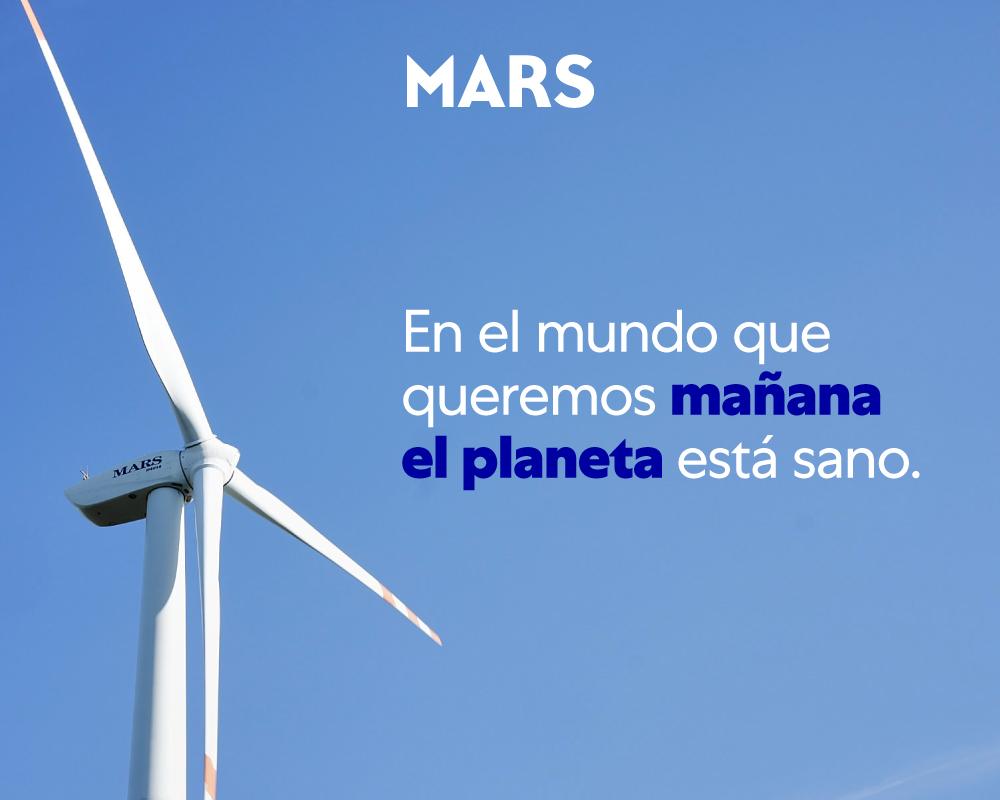 Market Information
Market Information
3+ MIN
05/06/2023
Leading the way towards a sustainable pet food industry
There is no doubt that pets make the world a better place and in this world they are welcomed and cared for as they deserve. For those responsible for a dog or cat, as for most consumers in general, it will be convenient to choose sustainable and enriching options that take care of the environment and have a positive impact on the community. For example, at Mars, from its pet food division, it continues to promote different initiatives and strategic alliances that focus on a future in which the planet is healthy and people and their companion animals prosper. From the way you manage your raw materials such as meat ingredients, cereals and, the supply chain itself that participates in the production of your food for brands such as PEDIGREE®, ROYAL CANIN®, EUKANUBA®, SHEBA®, WHISKAS® AND CESAR ®, until the energy used in their factories, Mars is taking steps to fuel progress, while meeting the climate challenge scale and urgency. Every decision maded by Mars is based on their Five Principles and one of them is Reciprocity, because is known that when the benefits are mutual, the motivations are also shared. However, it is evident that the serious circumstances that our environment is experiencing boost Mars to take action with greater emphasis, because for the company, 'in the world we want tomorrow, the planet is healthy'. A Mars characteristic is to implement sustainability actions that based on three main axes: in which them has control (in its way of operating); related to their direct emissions and, finally, the impact of its value chain (both: prior to consumption and post-consumption). These lines respond to the global goals of the company. Why is this important? Climate change is already having an impact on our daily lives, from changing weather conditions, the food supply, the availability of ingredients, how ingredients are made, until these products our pets love so much. Since 2017, the company defined its Global Sustainable plan in One Generation and assigned human and economic resources to achieve the goal of reducing the carbon footprint, contributing to the global corporate goal of 27% by 2025. Today all the manufacturing plants of in Mexico consume electricity that comes from wind farms. Likewise, they review the processes and materials used - always guaranteeing quality - to ensure that their packaging is 100% reusable, recyclable or compostable. They seek to contribute to a circular economy where packaging does not become waste. They also work for efficient water management, eliminating its excessive use, establishing water balance targets for 2025 for factories in Mexico. They propose to improve the health of the soil with sustainable practices, which prevent occupying more land and allow the use of non-chemical fertilizers and crop rotation. Finally, they seek to improve the quality of life of farmers and encourage them with training. Adding the support of government agents, which will allow them to implement more environmentally friendly practices. On the other hand, Mars takes into account the importance of stopping deforestation. For this reason, they work hard to fulfill their deforestation commitment by increasing the traceability of the materials used, since this step goes hand in hand with reducing emissions. Their actions are largely inspired by the experience gained by other Mars sites globally. These projects, applied according to local circumstances, have been very successful. For example: in Mexico, the case of the work carried out jointly with Oceanus A.C. for the restoration of coral reefs in Quintana Roo and Veracruz. Initiative that has managed to grow coral coverage from less than 5% to 20% in 3 years, since it combines MARRS techniques (Mars Reef Restoration System - reef stars) and the application of Oceanus techniques. This 2023 the installation of 300 additional reef stars in Veracruz and 150 in Xcalak will be completed, to have more than 1.700. In addition, they will continue the transplant work with the goal of placing more than 30.000 coral colonies by 2025. The company, focused on the world and the communities where it operates, continues on the path of sustainability, seeking different ways of doing things that help them achieve their goals. Its commitment to sustainability is at the heart of its purpose, because Mars knows that 'the world we want tomorrow begins with how we do business today'. By: Mars Source: All Pet Food
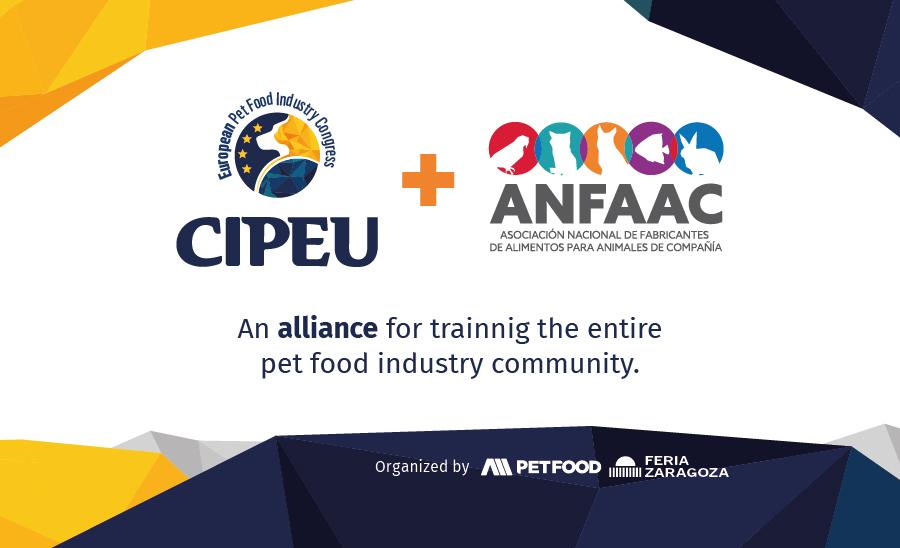 Market Information
Market Information
2+ MIN
02/06/2023
An alliance for training the pet food industry
This strategic alliance will undoubtedly be a great contribution to the entire pet food community, and so CIPEU and ANFAAC have expressed mutual interest in celebrating a collaboration agreement that allows them to develop different activities, within the CIPEU Congress 2023. As we´ve been communicating, Feria Zaragoza and All Pet Food are orthe organizers of the first CIPEU Congress edition, which will be taking place on September 27th and 28th, 2023, at the Feria Zaragoza Conference Center (Zaragoza - Spain). The main goal of the Congress is to become a meeting point for the entire pet food industry in Europe. There will be an Exhibition Hall with the leading companies of the sector, eager to receive national and international professional attendants. Moreover, a qualified conference program related to Process and Nutrition will be provided by leading speakers. On the other hand, ANFAAC is an organization that has among its aims, to promote the development of the pet food sector in order to boost activities related to manufacturers, and to foster the necessary development for the economic sustenance of the sector. ANFAAC will be part of the broad conference program. Both organizations are of vital importance for the growth of the pet food segment, so the alliance will allow each part to make their contribution in a Congress which will be providing a networking and training space between the providers of the Industry, pet food producers and professional of the Industry We invite you all to be REGISTERED and be part of this meeting point! By: All Pet Food
 Market Information
Market Information
4+ MIN
01/06/2023
Por María Candelaria Carbajo
New trends, new market opportunities
Now, pets have stopped coming into people's lives for utilitarian purposes, as it was in the past with surveillance or grazing, for instance. Pets are closer to people and people to them, fully engaged intellectually and emotionally, so much so that around 22% of millennials and gen z say they prefer having a pet to having children. As these animals are more at the center of their owners' lives, new demands, trends, and, of course, opportunities are coming to the pet food industry. Integrative approach A report of ADM company affirms that one of the most important trends for 2023 is the need for pet food with an integrative approach. To have a futuristic vision, pet food companies need to stop focusing only on quality and consider other aspects that make up the product as well, such as ease of use and packaging practicality, sustainable sourcing, and environmental care. More than 42% of pet owners prefer pet food with sustainably sourced ingredients. The increasing pet humanization is fostering a holistic approach to pet wellness, including weight management, digestive health, and personalized premium solutions, among others. In 2023, the most successful brands will be those that are already broadening their vision and seeking a more holistic approach to pet food. Scientific evidence ahead The ADM report also shows that pet owners know more about animal health. An article on the Internet that recommends a food type or ingredient is no longer enough for them. Instead, they want and demand evidence and scientific studies that certify the effectiveness of certain ingredients, supplements, or treatments. 57% of pet owners worldwide affirm that the health claim on product packaging is essential when choosing a pet food. Thus, labels such as "clinically tested", "scientifically studied", or "recommended by veterinarians" could considerably increase the chances of being the chosen product. Innovation in production and affordability Pet owners, and especially younger ones, such as millennials and gen Z, are, to a greater or lesser extent, informed about technological innovation and how it can impact food health. Raised on the Internet and with trends and updates of products and solutions on the order of the day, they are quick to recognize, but also to demand, innovation in everything they consume. And their pet food is no exception. Innovative product launching is an opportunity to create a superior and pleasant experience, both for the owners and the animals that consume said product. Two out of three pet owners internationally like to come across pet food with new and innovative flavors. For its part, affordability is another fundamental aspect in which innovation has a preponderant place. Feeding so many pets with affordable nutrition is a challenge that can only be overcome through innovation to meet the demand for high nutritional value at the right price, in both developed and developing countries. Personalized and specific pet care Personalized nutrition strategies, tailored to the specific needs of an individual pet, can enhance healthy aging and development. Products with specific benefits give consumers confidence that they will deliver the desired results. Plus, with more health and wellness options to choose from, owners can see which products offer unique ways to address specific concerns. Younger pet owners often look for those that can support immune function and general wellness for lifelong benefits. Parents of older pets often look for custom solutions, such as those that address joints and mobility. Functional treats (made with food ingredients that offer nutritional benefits) and pet health supplements (that support a specific body structure or function and are not nutritional) are segments expected to grow rapidly. Quality is the thing Although owners have recently begun to spend more on food and treats for their pets, they are also demanding higher-quality products. And by quality, we mean natural. They prefer ingredients more similar to those that wild canines and felines would have found in their natural habitats, or even pet food with a quality close to what they themselves would eat (hence, for example, the rejection of meat by-products, or the slow acceptance of alternative proteins, such as insect one). While traditional dry kibble is still the type more consumed, sales of other alternatives have been slowly growing, such as mixes of kibble and freeze-dried meat and vegetable chunks or dehydrated and freeze-dried foods. By 'natural,' pet owners demand non-GMO ingredients, novel proteins, and plant-based foods. Brands with values, above all else Global inflation is driving some property segments out of the market, a situation exacerbated by brick-and-mortar retailers reducing the allocation of shelf space to value-oriented suites of solutions. Faced with an increase in prices and a decrease in their salaries, pet owners incline towards one brand or another due to the value, transparency, and trust they represent and transmit, both in their marketing and in their products mainly. Today's brands must deeply cultivate their values to gain an understanding of where consumers draw the line of engagement. Of course, hand in hand with values and transparency, the trend for clean labels grows. Not only due to a lack of ethics but also due to the research carried out by consumers before their purchase decisions, transparency is needed on the labels of food products so as not to throw overboard all the actions carried out to demonstrate a brand's value. Modern pet parents treat their pets just as well, if not better than themselves. And, although pet tastes do not change from year to year, the interests of their owners do, and, after all, they are the ones who choose us first as brands. Although we cannot predict the future, we can use the data and information available to start analyzing and looking for alternatives for our businesses so that we remain competitive in the market and, above all, offer the solutions that our consumers need. Source: All Pet Food Magazine
 Market Information
Market Information
4+ MIN
31/05/2023
AFIA's Board of Directors Advocates for Animal Food Issues, Welcomes New Leadership
At the Board briefing on Wednesday, the directors heard from Tracey Forfa, J.D., director for the Food and Drug Administration's Center for Veterinary Medicine, and Tim Schell, Ph.D., director of the FDA's Office of Surveillance and Compliance, on the regulatory process for approving new animal food ingredients, especially those with non-nutritive benefits (e.g., reduced food safety pathogens or emissions), agency resources and more 'We have pushed very hard to recognize that there are a lot of novel feed ingredients coming down – that is the future,' said Forfa. 'We recognize that, and so we have been really working very hard to figure out how to make the process for reviewing those keep up with the times.' Forfa said regulating products in 2023 with authorities based in the 1930s is a challenge that CVM's lawyers have been working to figure out. In addition, CVM has been working to bring technical experts on board to help the agency keep pace or stay slightly ahead of innovations in the regulated industries. The Board also heard from Daniel Whitley, administrator of the U.S. Department of Agriculture's Foreign Agricultural Service, on two public-private partnership programs that promote agricultural products abroad – the Market Access Program (MAP) and Foreign Market Development (FMD) Program. 'The programs have not had an infusion of increased funding – ever. They are still at the same [levels] they were at decades ago,' Whitley said. 'The problem is our competitors see how well we're doing with promoting our products, so now they are starting to do it. But they are starting to invest and spend more money than what we have.' On Thursday, the Board directors met with U.S. Senate and House offices, where they lobbied for a legislative amendment to regulating novel animal food additives at the FDA as feed ingredients, instead of drugs; $5 million in increased funding for the CVM; and key Farm Bill trade and conservation programs that can help the industry remain globally competitive and sustainable in the future. During the official business meeting Thursday afternoon, the AFIA Board of Directors recognized outgoing Board chair Mike Gauss, president of Kent Nutrition Group, Inc., for his leadership over the past year and installed Carlos Gonzalez, Ph.D., worldwide director of regulatory affairs for Hill's Pet Nutrition, Inc., as its new chair, effective through the end of AFIA's fiscal year April 30, 2024. Gauss now transitions into one year of service as chair of the Institute for Feed Education and Research's (IFEEDER) Board of Trustees. Mike Gauss (left), outgoing AFIA Board chair, passes gavel to Carlos Gonzalez, Ph.D., incoming chair 'I have worked with staff and members of this organization since the early 2000s when I began my regulatory career and am blown away by the work that you do.' Gonzalez said. 'I am humbled that you have put your trust in me as Board chair over the next year.' The AFIA Board also voted to accept the nomination of Leigh Ann Sayen, CEO of The Petersen Company, to become chair-elect of the organization for the 2024-25 AFIA fiscal year. The Board also confirmed the appointments of the following individuals to serve three-year terms: Scott Baker, SEM Minerals, LP; Cory Berg, QLF-Quality Liquid Feeds, Inc.; Nathan Bingaman, D1 Resources, Inc.; Jonathan Cowles, WL Port-Land Systems, Inc.; Susanna Elliott, Alltech, Inc.; Marlin Hoogland, D.V.M., Smithfield Foods; Paul Kalmbach, Kalmbach Feeds, Inc.; Steve Lerner, Ph.D., Chr. Hansen Animal Health and Nutrition; Allen McDonald, Global Animal Products; Steve Mills, Perfection Pet Foods; Rebecca Mowen, ADM Animal Nutrition, Inc.; Matt Podany, EBM Manufacturing; Tim Reed, Reed Mariculture; Karl Thoene, CHS, Inc.; Ben Towns, Arm & Hammer; and Ty Vaupel, Alfagreen Supreme. In addition, the Board approved seven nominated individuals as additions to AFIA's Executive Committee: Holly Bellmund, GLC Minerals, LLC; Rob Brock, Westway Feeds; Julio Contreras, Sweet Manufacturing; Dan Hennessy, Land O'Lakes; Dan Meagher, Novus International; Mark Poeschl, Furst Mcness Company; Dan Rice, Western Milling; and Wesley Wilson, Ag ProVision, LLC. The AFIA thanks the following outgoing Board members for their three years of service: Eric Arnold, Bill Barr & Company, Inc.; Mariano Berdegue, Cargill Animal Nutrition; Kristin Bonham, DSM Nutritional Products, LLC; Katie Cook, Elanco Animal Health; James Gerardot, Jr., Kincannon & Reed; Tim Jacobson, Tier 1 Nutritionals, Inc.; Mike Lennox, Kentucky Equine Research, Inc.; Elizabeth Maier, Wilbur-Ellis Nutrition; Sean McNear, Blue Buffalo Company, Ltd.; Jeff Pendleton, Hallway Feeds; Paul Phillips, Maxi-Lift Inc./DuraPlas Inc.; Chad Risley, Ph.D., Berg+Schmidt America, LLC; Rob Sheffer, Zinpro Corporation; Mike Schuster, Laidig Systems, Inc.; Jason Summar, Hood Packaging Corporation; Philip Greene, Foster Farms, Inc.; and Doug Webel, United Animal Health, Inc. The complete 48-member list of directors can be found on AFIA's website. by AFIA Source: All Pet Food
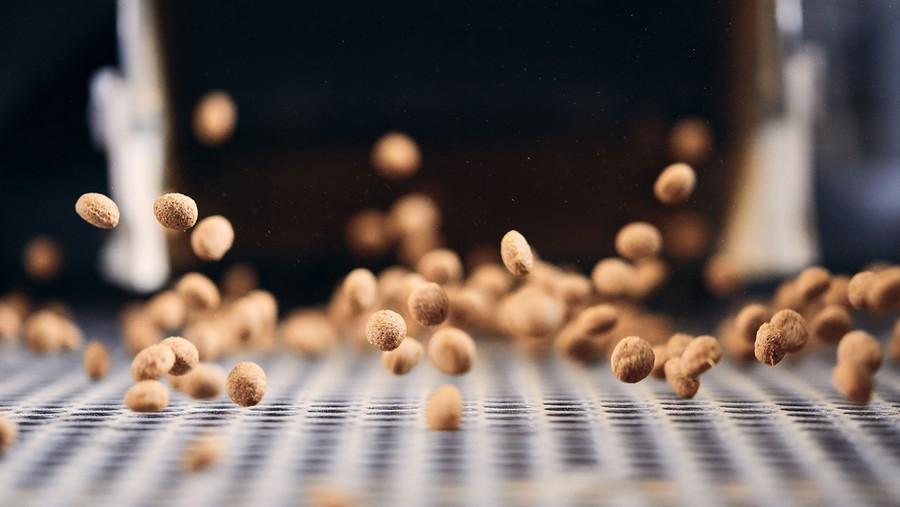 Extrusion
Extrusion
1+ MIN
30/05/2023
Taking Pet Food to a Premium Level
Flexible pet food solutions Pet owners often want to give their pets high quality, premium food, just as they would care for a child's diet. Nutrition, process control and food quality are complex and sophisticated topics and in order to stay ahead in the competitive pet food market, you need reliable technology that enables you to benefit from new business opportunities and create new food formats. With roots that go back to the very start of the food processing industry, GEA is in the privileged position of having over 80 years' experience. We have become true specialists in the areas we are active in, like spray and freeze drying, evaporation, filtration, meat preparation, extrusion and packaging for wet, dry pet food, treats and pet food ingredients. Serving the pet food industry Each solution is tailored to specific process needs, factory conditions and business objectives. We design our equipment to boost process efficiency, while offering safety and flexibility in terms of product development. We have a unique understanding of the pet food market and have installed numerous complete lines worldwide, all developed hand-in-hand with customers. Our technology covers a multitude of pet food areas, including Pet Food Ingredients Wet Pet Food Dry Pet Food Pet Food Treats Freeze-Dried Pet Food Whether you need a single machine to boost existing line performance or a complete solution for a new factory, GEA is the right partner for you. By GEA Source: All Pet Food
 Extrusion
Extrusion
2+ MIN
26/05/2023
Scott Krebs appointed President of Wenger
In this position, Scott will drive strategic objectives and lead the Wenger team in the US, Denmark, Brazil, and all other countries. In close collaboration with the Marel leadership team, he will drive cross-selling of Marel solutions to customers in the Plant, Pet, and Feed business segment. 'I am very excited to welcome Scott to the role of President of Wenger. Scott has more than 30 years of experience in the field of extrusion technology and is well-known and respected for his many great achievements within Wenger, especially leading the successful build-up and growth of Extru-Tech, a company that is part of Wenger. With Scott on board, we ensure a continuation of the successful Wenger strategy and that we continue to strengthen our position and customer relationships in the Plant, Pet, and Feed business segment', says Arni Sigurdsson, Chief Business Officer and Deputy CEO. Scott joined Wenger in June 1991 and has since had a long and admirable career within Wenger, from an entry position as Project Engineer to the most recent executive role of President, Extru-Tech, a subsidiary of Wenger, focused on extrusion systems to produce human food, pet food, aquatic feed, and animal feed products. Scott has demonstrated excellent customer focus, operational and people leadership, and P&L management, and has been instrumental in building and improving the competitive position of Extru-Tech, resulting in more than 50% of profitable topline revenue coming from aftermarket services. Scott holds a bachelor's degree of Science in Mechanical Engineering from Kansas State University, and he lives in Sabetha, Kansas, US, with his family. On this occasion, Marel would also like to extend a special and personal thank you to Jesper Hjortshøj for his dedication and valuable contribution in leading Wenger as interim President since the acquisition in July 2022. Jesper will continue to support Scott and the Wenger team during the transition and return his full focus to his leadership role as VP of Business Development at Marel. A standalone platform for new and attractive growth markets Wenger will operate as a standalone business division and leverage Marel's global reach and digital solutions to grow and expand the business. Marel will provide strategic direction and is committed to invest in the business and manufacturing capacity to drive commercial synergies and accelerate growth. Wenger enjoys a diversified and loyal customer base ranging from blue-chip pet food processors to startup companies in plant-based proteins. Over 60% of Wenger's revenues derive from pet food, where the company has a leading global position, and over 40% of revenues come from aftermarket services. This has resulted in Wenger's healthy profitability with an EBIT margin of 14-15%, strong cash flow and solid return on invested capital. Q3 2022 was the first quarter where the newly acquired Wenger business was consolidated in Marel's segment reporting under the name of 'Plant, Pet and Feed,' which also included Marel's own sales of retail and food service solutions into this market segment. By Marel All Pet Food
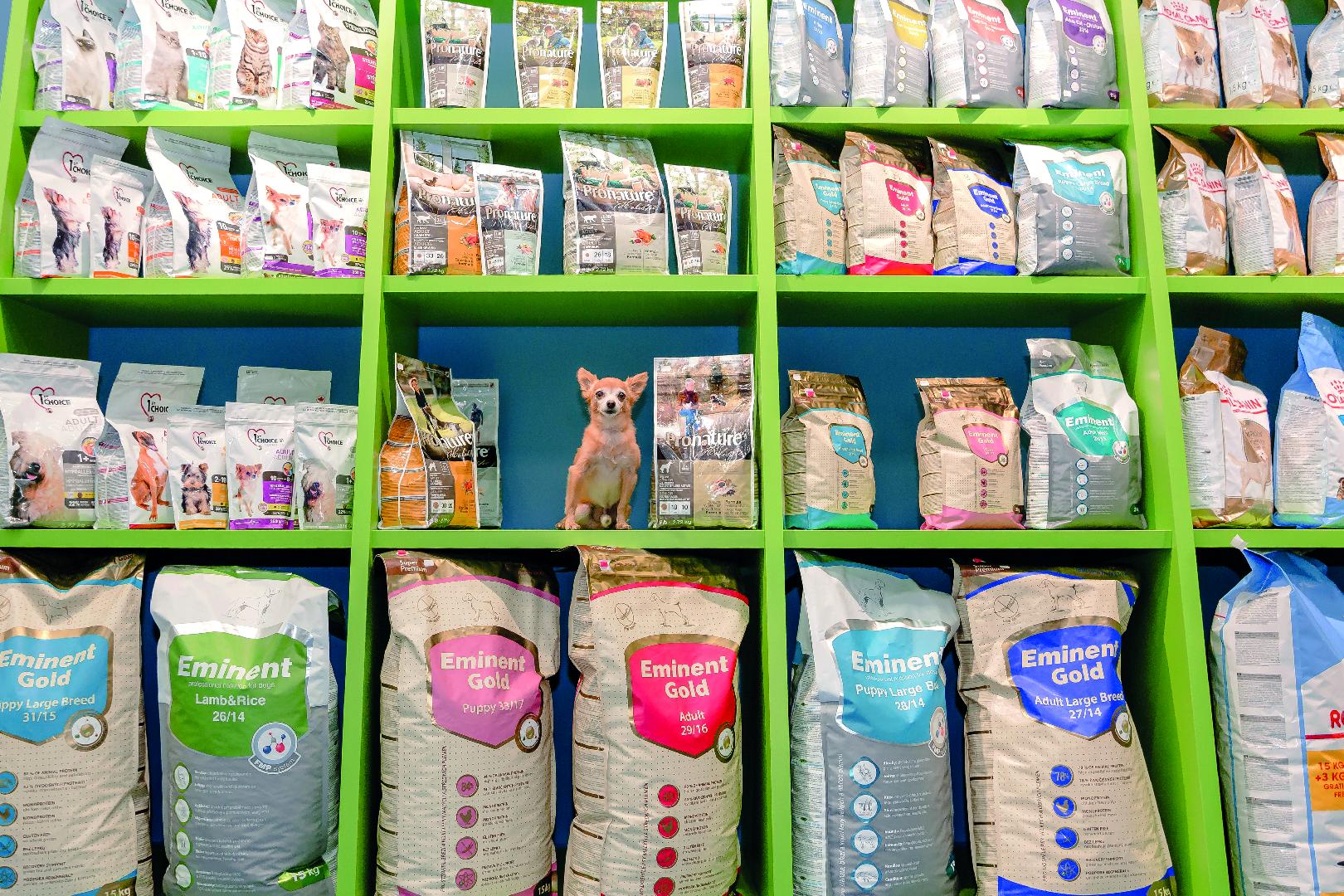 Market Information
Market Information
4+ MIN
23/05/2023
Por María Candelaria Carbajo
New opportunities, challenges arising
The pet food industry does not stop growing, but it does so on a fully developing basis: changes in consumer habits, variations in purchasing power and spending dedicated to pets, greater access to information, and others. Factors are not only presenting new challenges in the industry but also shaping it with these new demands and needs. So, how is growth sustained? How can we grow and respond with innovation to these demands simultaneously? Is that, in any way, possible? The global impact of COVID-19 has been unprecedented and is still leaving staggering traces. By comparison, the pet food industry emerged from the pandemic with significantly higher numbers, but by no means easier to catch up with. Several studies carried out in recent times have indicated that people who have pets tend to have fewer mental health problems, such as feelings of loneliness and depression. This perception of the importance of animals in people's lives, as well as the increase in adoption, fueled by telecommuting and temporary confinements, makes today's pet owners little like those who existed before 2020. The change is notorious: the perception of pets has changed, and, consequently, their care, habits, and consumer products. Personalized pet food, for example, is one of the growing demands gaining ground in the market worldwide. Sooner or later, it will become even more popular in the coming years. Personalization of pet food products has great potential to grow significantly, as pet owners become more conscious of the food they feed their pets, especially to address particular pet conditions such as obesity, dry skin, and others. Faced with this, the challenges to face (and on which companies should already be working) are mainly related to personalized formula production, functional packaging for product preservation, and logistics management. Of course, innovation comes hand in hand with proposals for these problems which, if solved, will bring a great positive influence on the market and on the company's brand that achieves it. On the other hand, one of the challenges most present in this industry has to do with the strict regulations associated with pet food. Although this is a positive aspect of product professionalization and safety, it is also true that it hinders, on certain occasions, growth and expansion. Either way, pet food is among the most regulated food products, especially in Western markets. In more developed ones, pet foods are rigorously scrutinized at every stage, from formulation ingredients to sales and marketing. Thus, the high stringency associated with commercialization can be a major constraining factor for market growth. Despite the mentioned challenges (and several more, such as raw materials scarcity or logistics problems, for instance), markets still focus on their growth and expansion. North America is the leader in the dog food market, with a 47% share of it. Europe is the second largest market for dog food, with a 25% share of the global industry; Asia-Pacific accounts for 15% of the global dog food share. South America, for its part, accounts for 14% of the same, with projected revenues of $11.5 billion in 2026. In turn, the said market in the region is expected to grow at a CAGR of 4.6% between 2022 and 2027. Dog food accounts for more than 75% of the region's pet food industry, the highest percentage compared to any other global market. Argentina is one of the countries with a high possibility of growth thanks to quality control. Currently, according to Francisco Schang, Director at CAENA, in 2021, Argentina produced 764,000 tons of pet food, with the main participation of cheap products, with 40% of the country's production. Premium foods represented 27% of it, and super-premium, 18%. In turn, 18% of Argentinian pet food production is for exportation, a percentage that can increase if we focus on various optimizations, such as quality control. As stated by Mariano Ortega, President at ASDE, in his presentation. at the latest CIPAL edition: 'Quality control procedures increase efficiency, ensure consistent pet food products, and reduce the potential for product recalls. Moreover, in addition, quality control can even become a marketing tool too, for example, expanding the domestic market and import with improved quality control measures. Thus, both Argentinian pet food exportation and the domestic market could be boosted by using quality control as a marketing strategy.' In addition, he stated that, in the international market, products can be differentiated from competitors with design, brand, marketing, functionality, or other qualities, but they lose all their value if the quality of the product is not guaranteed. In the case of Brazil, for its part, it has a pet food infrastructure bigger than the Mexican and Argentinian. Currently, its biggest internal challenge is found in the penetration of new pet food products into owners' habits, and the acceptance of the diversification of proposals, such as wet food. Conclusion These are just a few examples of the challenges we face regionally and internationally in the pet food market. And while we can't predict the impact they will have on the industry, we can actively work to make that impact positive and bring more growth, expansion, quality, and innovation to the pet food industry. Fuente: All Pet Food Magazine
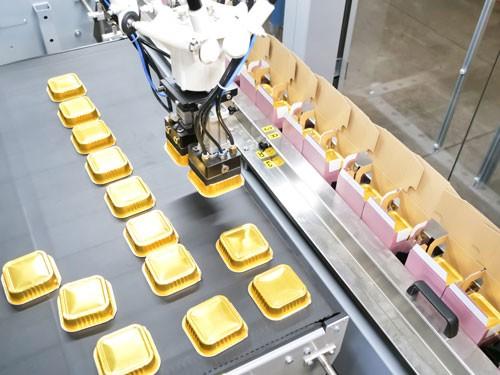 Packaging
Packaging
2+ MIN
22/05/2023
A world-class line in pet food industry
A constantly growing trend: Cats and dogs have become part of the family. But not only them. According to Euromonitor data, pet population in Italy at the end of 2021 accounted for 30 million fish, 13 million birds, 10 million cats and 9 million dogs. The lockdown period played its role while the industrial world didn't wait on the sidelines but, on the contrary, continued competing with an ever-larger offer that paid greater attention to petfood quality, packaging design, and communication. In this scenario, GPI – Geo Project Industries, with cemented know-how in robotics and packaging, developed a plant for a revolutionary governance of the production line: Every phase from depalletization to primary and secondary packaging, to palletization, to flexibly and efficaciously meets customer's requirements. A turnkey solution featuring easily openable/closable display boxes, for capacity of 500 piece/minute, that manages 4 different flavours that can be further increased to 6 and 8 by adding robot isles. Things do not change when it comes to pouches/doypacks, increasingly popular thanks to their utmost practicality and small size, and dry pet food boxes or pouches. GPI paper department designs the ideal packaging upon customer's requirements and grounding on three fundamental criteria: The best product protection, enticing aesthetics to conquer the purchaser, use of techniques and sustainable materials, such as cardboard, for higher respect of the planet and minimum impact on the environment. GPI management says 'We are close to our customers and their pets. When we meet our partners the first sentence is not 'Our machines operate this way' but rather 'What can our machines do for you?'. A tailored approach that has helped us grow in these years in terms of know-how, relationships, and markets.' GPI new machine – studied to guarantee a complete production cycle in the pet food industry – is likely to become an international one of a kind for its very high flexibility in production, and utmost customization upon the goals of the various players of the sector. by GPI Group
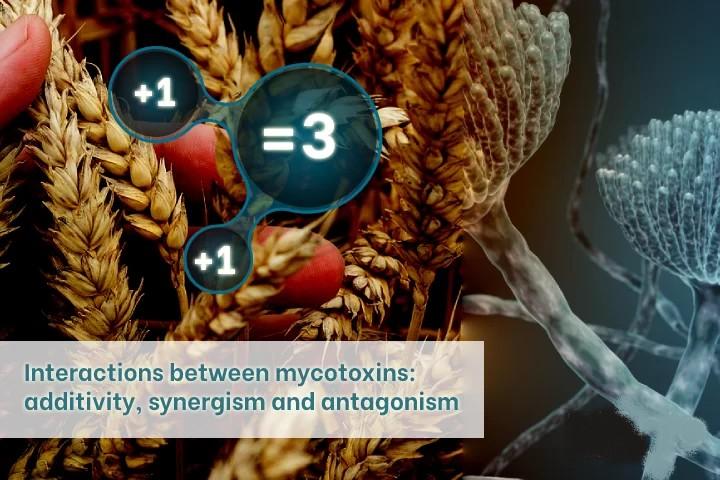 Dogs
Dogs
3+ MIN
19/05/2023
Interactions between Mycotoxins: Additivity, Synergism and Antagonism
In animal production and pets, the clinical signs of mycotoxicosis in the field can rarely been explained by the very low levels of mycotoxins present in the feed. However, the combination of mycotoxins can have a double effect as high as when those toxins are presented individually. Despite the magnitude of this challenge, the literature on the combination of toxins is still limited, especially with regards of trichothecenes (Pedrosa, 2010). The combination of several mycotoxins leads to the formation of different interactions that can be additive, synergistic or antagonistic (Greco et.al, 2014). It should be noted that the type of interaction varies depending the animal species, sex, age, mycotoxin dosage, duration, nutritional status of the animals and the route of exposure to the mycotoxin (Gruber, Jenkins, & Shatzmayr, 2019). Additivity Additivity refers to the effect of the combination of mycotoxins being the same as the sum of the individual effect of each toxin. When the combination of mycotoxins presents the effect of the most toxic mycotoxin without the effect of the other mycotoxin, the term 'less additive' is used (Smith et.al, 2016). Some examples of mycotoxin combinations that exhibit additivity include Aflatoxin B1+ Ochratoxin A, Aflatoxin B1+ Toxin T-2, Aflatoxin B1+ Fumonisin B1, Ohcratoxin A+ Toxin T-2, DON+Fumonisin B1, Moniliformin+Fumonisin, Moniliformin+ DON, Fumonisin B1+ Diacetoxyscirpenol and Fumonisin B1+ Toxin T-2 (Aihelen, 2021). Antagonism Antagonism refers to the combination of mycotoxins having a lesser effect than the sum of the individual effects of the toxins (Smith et al., 2016). In other words, the concept of antagonistic effect applies when the toxicity of one compound is used independently of the toxicity of the other compound (Ruiz, Macakova, Garcia, & Font, 2011). It has been reported that the combination of DON and zearalenone has an antagonistic effect on immune function in pigs. Similarly, the same antagonistic effect was reported in mice, but on liver health and metabolism (Gruber, Jenkins, & Shatzmayr, 2019). Sinergism Synergism between mycotoxins is defined as the toxic effect exerted by the combination of various mycotoxins at certain concentrations that is greater than the sum of the effects of each mycotoxin when presented individually (Gimeno & Lígia, 2011). In other words, synergism is when the observed effect of the combination of mycotoxins is more than what is expected based on the effects of each mycotoxin. When one or more mycotoxins do not induce an effect while the combination does have a significant effect it is called potentiation, although this term is rarely used (Smith et.al, 2016). Synergism increases the toxic effects of mycotoxins, and some of the synergistic actions are presented by aflatoxins with ochratoxin or aflatoxins with T-2 toxin (Greco, Franchi, Rico, Pardo, & Pose, 2014). In Fusarium-derived mycotoxins, most interactions range from additive to synergistic, affecting mortality, animal growth, and feed intake. Several reports indicate synergistic interactions of deoxynivalenol with fusaric acid, DON with fumonisin B1, or even diacetoxyscirpenol and aflatoxins. (Pedrosa, 2010) The challenge of the interaction between mycotoxins in animal production Nowadays, most of the studies on the combination of mycotoxins in animal nutrition are conducted in vitro using cellular models instead of animal models. There is a huge diversity of interactions that mostly have additive or synergistic effects, and given the complexity of the mycotoxin mixture, their combined toxicity is difficult to predict. The toxic effects presented by cells vary according to: cell type, exposure time, mycotoxin concentration, tests used, and statistical models. With these mentioned factors, the mycotoxin combination undoubtedly represents a threat to human and animal health since the toxicity of each combination will be different for each contaminated feed; not to mention that mycotoxins when combined can generate a toxic effect, even if they are present at low concentrations (Smith et al., 2016). Finally, there is a lack of studies that address topics such as exposure to sub-toxic concentrations of mycotoxins from multi-contaminated feed, as it is a more realistic scenario for food and feed consumption. by Bionte Technical Department All Pet Food
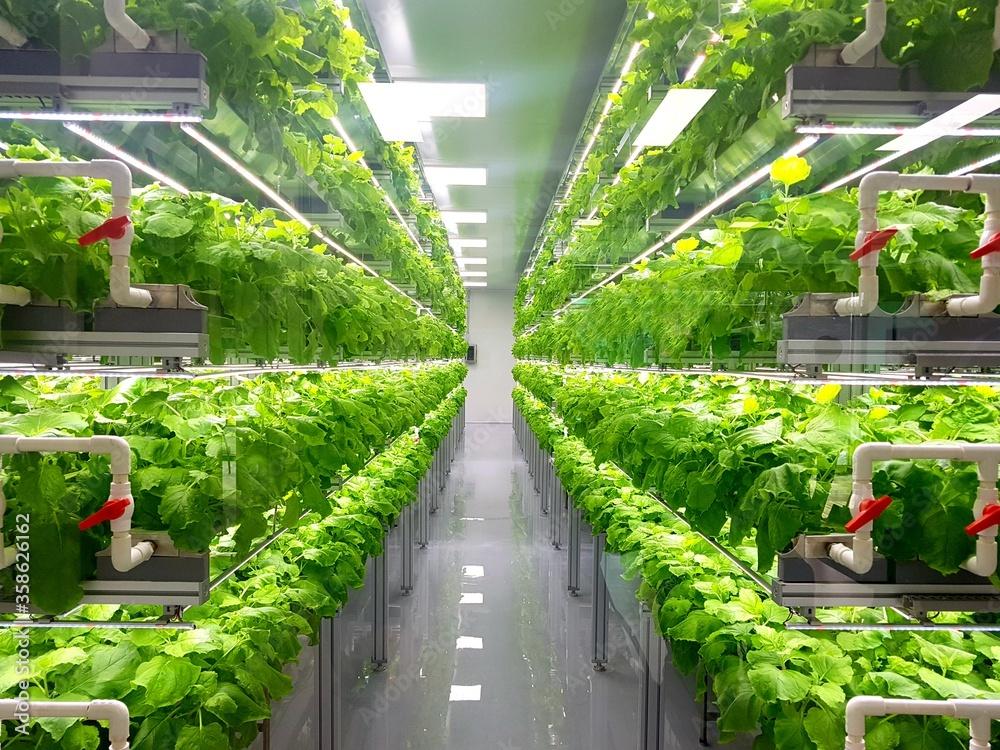 Trends
Trends
3+ MIN
18/05/2023
Por María Candelaria Carbajo
Vertical farming: a possible solution to the challenges of the food industry
Is vertical farming the answer to industry challenges? We know that costs, raw materials availability, land and water use, greenhouse gas emissions, and weather-related contingencies are only some of the challenges facing a growing food industry. It seems that vertical farming can help solve, or at least alleviate, some of these challenges. Vertical farming is a revolutionary approach that proposes growing crops in vertically stacked layers to make efficient use of space and create closed-loop ecosystems. It usually works climate-independent, with controlled-environment agriculture, which optimizes crop growth, and even, in many cases, uses soilless cultivation techniques. Most commonly deployed to grow crops, such as leafy greens and herbs for human consumption, there are also companies that have already started using them for livestock feed crops. Currently, the vertical farming market is expected to reach $24.11 billion by 2030. Vertical agriculture, a path full of possibilities Climate change is destroying or seriously affecting dozens of ecosystems around the world, which affects land for cultivation. Short growing seasons also affect the ability to produce enough food for populations internationally. That is why having the ability to grow food indoors and avoiding the unpredictability that comes with outdoor cultivation could prove to be the most rewarding solution for the industry. Vertical farming is presented as an alternative that solves problems such as irrigation restrictions, land limitations, low forage years, access to quality feed, inflation, and rising and unpredictable input costs. Its great advantages lie in that it uses less water and land for production, can reduce methane emissions, combat deforestation, use fewer fossil fuels, generate less food waste, and even alleviate some interruptions in the supply chain. Therefore, that's why it's considered one of the most viable forms of sustainable production and supply. Another notable benefit is its ease of implementation since it can be installed where it is most needed. Addressing the problem from the grassroots We can highlight that vertical farming, by allowing local growth, can make producers need less labor for growth and harvesting. They will be able to control pests and diseases better and scale their production to achieve sustained quantities throughout all annual seasons. Instead of focusing on producing a product directly for human consumption, this alternative addresses an important problem from its bases: livestock feed and nutrition, produced in a sustainable manner. Automation, at the center, once again Automation will play a fundamental role in vertical farming management. With networks of sensors connected to a digital control panel to monitor all crop parameters, not only is labor reduced but the raw ingredients are improved. Furthermore, with artificial intelligence, health, and growth rate can be optimized, and diseases or mold can be predetermined, for example. Even the harvesting process can be automated so that, with the push of a button, the crop can be cut and transported. Resilience: new paths for the industry Vertical farming seems a great alternative to address labor shortages and sustainability concerns. It allows out-of-season food growth and supplement crops during the growing season. If implemented correctly and at scale, it can have a major impact on regional food security, gas emission reduction, and global food transport. The positive thing about this type of agriculture is that it is not tied to the externalities of climate change. And that, in a world beset by the climate crisis, makes it a promising food production method. Source: All Pet Food Magazine
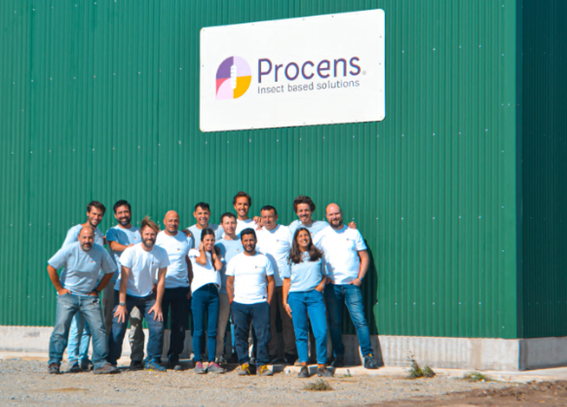 Market Information
Market Information
2+ MIN
17/05/2023
World Recycling Day
One way to take action regarding waste is the one proposed by the 4R strategy: reduce, reuse, replace and recycle. In this sense, an Argentine Government Agency (Defensoría del Pueblo bonaerense) boosted the importance of promoting the circular economy in the territories in order to recover waste and revalue them for its reinsertion in the industry, transforming it into new products of social and environmental value. So, to highlight this important date, we share with the entire pet food community the work carried out by Procens, a company with a great environment commitment. Procens aims to produce quality natural nutrients for animals and plants from a regenerative model. They work with great enthusiasm to preserve natural ecosystems and take care of human health. With its headline phrase: 'Nature would not have to produce as our factories do. Our factories should produce how nature does." G. Pauli, Procens leads the development of a new insect based industry, in Argentina and Latin America, offering a sustainable solution for nutrient recycling. This is done through the development of black soldier fly larvae breeding bioplants, to transform food waste into quality protein for animal feed, and fertilizer for soil regeneration with a 100% natural and sustainable process. This turns them into a triple impact company with a model founded on the knowledge and circular economy. Prioritizing the well-being of your team, your community and the environment as the center of its development. The company proposes its products as a sustainable option in the formulation of pet food, since Larvae Meal (ProtiCens) and Larvae Oil (LipiCens) are 100% natural and are made without adding chemicals. Both ingredients can nutritionally replace other conventional animal origin meals and vegetable oils, such as coconut and palm oils, currently used in the industry, whose production damages our land and marine ecosystem. Also, a collaborative garden was created as another way to promote sustainable practices and learn about agroecological production techniques. It has a compost bin to reduce the amount of organic waste that ends up in the final disposal, and transform it into nutrients for the plants that are grown there. Procens teams was invited to participate and everyone was given a basket to dispose of their compostable household waste, which is collected periodically to compost in the bioplant. So, involving the family in the initial separation is intended to promote ecological habits and multiply them in the community. The project also seeks to promote a healthier diet, providing garden products for employees consumption. To learn more about this 100% sustainable company, you are invited to watch this video! By: All Pet Food
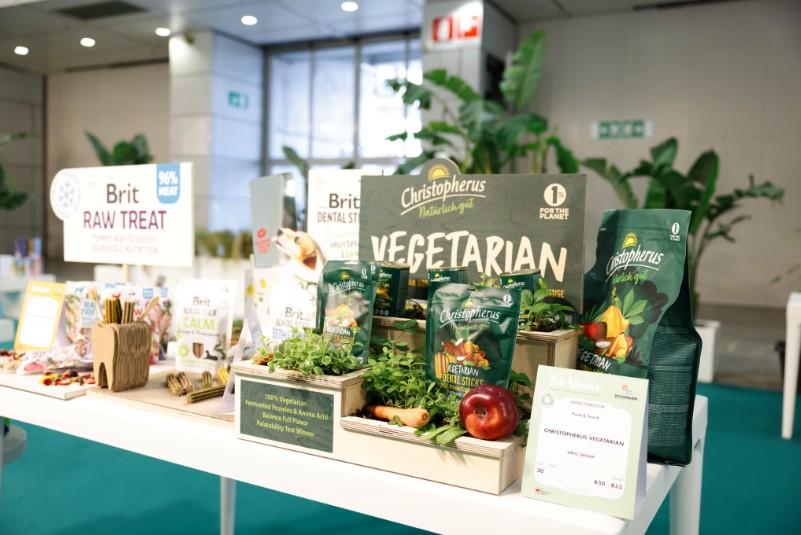 Market Information
Market Information
4+ MIN
16/05/2023
Pet food and pet care: a growing market with cat and dog food driving sales
15th May 2023 – There are nearly 65 million pets in Italian households, including nearly 9 million dogs and 10 million cats. Food products for these species represent the main segment of the domestic pet food and pet care market. In 2022, sales of dog and cat food products totalled € 2,759 million in the Italian market. Compared to the previous year, sales by value were up 11.4%, influenced by the strong inflationary dynamics in all producto categories. In terms of volume, more than 673 thousand tons were sold, an increase of 0.8% over 2021. Cat food accounted for 53.8% of total value, with sales of just over € 1,484 million. Dog food, on the other hand, accounts for 46.2% of the total market, € 1,275 million. An extensive overview of the market is being presented today at Zoomark International 2023, with the publication of the 16th edition of the Assalco-Zoomark Report. This publication, produced annually by Assalco, documents the evolution of the pet food and pet care market and the importance of pets in the family and society. "Today more than 40% of Italian households have at least one pet. The importance of our relationship with our pets is undeniable: they keep us active, help alleviate stress and are a valuable antidote to loneliness," commented Giorgio Massoni, president of Assalco."Pets are bona fide members of the family, and we are now devoting more time to them, and paying more attention to their diet and well-being. This increased attention is reflected in a market that, even in a difficult year like 2022, continued to perform well". This year's Assalco-Zoomark Report takes an in-depth look at the main trends driving pet food purchases. An analysis of product labels shows the factors that influence purchases of human food also apply to pet foods: the main trends are indeed 'rich in', 'free from' and Italian-made products. REDUCING THE RATE OF VAT ON DOG AND CAT FOOD: A SIGN OF PROGRESS For pet-owning households, pet food and veterinary care represent essential goods and services. At Zoomark International, Assalco therefore reiterates its support for the appeal made by consumer associations, veterinarians, animal rights associations and the industry to reduce the rate of VAT on pet food and veterinary care from 22% to 10%. "It doesn't seem right that the 22% rate should be applied to pet food, as if it was a luxury good. In Germany, in view of the fact that these products are used every day, and considering the role of pets in society, the VAT rate on food for dogs and cats is in fact set at 7%", explained President Massoni. FOODS FOR OTHER TYPES OF PETS ALSO SAW GROWTH According to estimates formulated by Euromonitor, in Italy there are almost 30 million fish, 13 million birds and nearly 3.2 million small mammals and reptiles in Italy. In 2022, the market for food for these pets grew in volumen by 2.3% and in value by 5.6%, with a turnover of nearly € 13.2 million in the world of large-scale retail. The main segment is bird food, which accounts for 43.7% of value and 47.6 % of volume, with sales up 6.3% in value and volumes remaining stable. This is followed by rodent foods, which also saw growth: up 7.7% in value and 2.4% in volume compared to last year. HYGIENE PRODUCTS LEAD THE PET CARE SECTOR In 2022, growth was also seen in the market for hygiene products, toys and accessories - namely leashes, kennels, bowls, cages, aviaries, aquariums, turtle tanks and various utensils. In the large-scale retail channel, sales rose by 3.2% to € 80 million, equating to a 1% increase in units sold. The hygiene segment is leading the way (from pee pads to wipes, shampoo, brushes, deodorants, care and beauty products): +11.7% in value and +6.9% in volume. Cat litter products, which are considered separately, represent the most important non-food category in the largescale retail channel. In 2022 this market was worth more than € 87 million, with a positive trend in both value, up +9.7%, and volume, +1.9%. THE GROCERY CHANNEL WAS HIT HARDER BY INFLATION In 2022 all the main distribution channels showed more growth in value than in volume. The biggest divide was in the Grocery channel, which accounts for 59% of total pet food sales (€ 1,628 million) and where inflation hit hardest. In this channel, sales by value rose by 14%, while volume only increased by 0.4%. The remaining sales were divided between Traditional Petshops – 5,000 stores in Italy which account for 24.4% of the market (€ 673.8 million in sales in 2022), Petshop Chains, which are worth about 14% of the total value (€385.1 million), and Supermarket Petshops, the newest distribution format, which saw sales of € 72.7 million and captured 2.6% of the total sales of dog and cat food. by ASSALCO
 Interviews
Interviews
3+ MIN
15/05/2023
Interview with Claudia Degrossi - World Social Communication Day
From All Pet Food we generate and share content created with research by our editorial team, clients, editors and colleagues from the pet food industry, backed by qualified sources, to provide technical-scientific articles, not only for reading as a hobby, but as a training resource. That is why we highlight a date that proposes to reflect on the responsibility that communicators assume, inviting them to become aware of their role and ethical conduct. And from All Pet Food to remain committed to this premise. Considering the important date and the importance of sharing information obtained from knowledge and research, what inspires you to play the role of disseminator? Among my values is learning... that connects me with personal improvement, with my view of myself as a process, being in permanent construction... And facilitating that process in other people is exciting and challenging for me. In this disseminator role I get in contact with people, I answer questions, I accompany others so they can learn the knowledge they need to solve their day-to-day issues... And those questions that they ask me lead me to rethink my role and myself, in this improvement cycle. On the other hand, and considering a subject as booming as controversial like Artificial Intelligence, what do you think about its use as a tool to create content? Perhaps I still dont have a formed opinion, it is rather reflections or feelings that are intermingled... There is a John Naisbitt phrase that I like, that reflects my way of looking at the future: "The most exciting revolutionary advances of the 21st century will not happen by technology, but by an expansive concept of what it means to be human"… And as human beings we are imperfect. I understand that this imperfection adds value to what we do. And in this act we build ourselves as authentic human beings, if we have the courage to let ourselves be seen. Maybe someone chooses to use that tool to start their job... Now, it's important for me to be seen in that content, and that happens when I get involved in writing... We know that writing texts has many benefits such as: generating neural connections, enriching vocabulary, improving fine motor skills, etc. What kind of impact can have using a tool that solves this task immediately? I understand that it could have a deep impact, at least on me, on the possibility of learning. I would be "delegating" something that I didn't even learn deeply about. How to grow if we skip that learning? Agility, a word that has a lot of presence today, but this doesn´t mean fast or immediate, rather it goes hand by hand with our adaptability. And that requires many skills such as flexibility, hierarchy, acceptance, detachment, among others, that we train while doing... And also, I don't want to miss the happiness and recognition of myself, when I do something that we value... In everything we write, we are ourselves... When I read someone else's text, emotions even arise, empathy appears... I don't know if that will continue to happen if the contents do not have a "human" author. Remembering the responsibility of communicators to create and disseminate articles generated from research and supported by true sources, what do you think about the reliability of the content creado with Artificial Intelligence? I imagine that this will be related to updating the information that feeds the system... Perhaps reliability doesn't have so much to do with updating, but with what makes it human. That "humanity" sometimes shows information that is far beyond "data" and is forceful... We invite you to add anything else you consider necessary to share with the pet food industry. I think that AI will have an impact in many aspects... It will be necessary to rethink the training proposals, professional skills, ways of working, etc... I strongly hope that we don't lose sight of its possible negative impact, if its use does not go hand in hand with a tracendental lokk, transcendental gaze, like the one that has at all of us connected. By: Claudia Degrossi Source: All Pet Food
 Packaging
Packaging
3+ MIN
12/05/2023
Increasing the shelf live with innovative packaging technology
Connolly's Red Mills is an Irish family business founded in 1908. The company is divided into three divisions: pet food, agriculture, and the core business of horse feed. Red Mills specializes primarily in the feed of racehorses. "When we received inquiries for shipping around the world, we were restricted by the point of shelf live," says Joe Connolly, CEO of Connolly's Red Mills. "As the export business grew, so did the challenge of how to get beyond the island of Ireland. Since the climate in Ireland is damp, we had problems with the shelf life of the product when we went into warmer climates. STATEC BINDER was the company we were closest aligned with, so we discussed this challenge with Josef Lorger," continues Joe Connolly. "To be successful and offer your customers the perfect solution for packaging their products, you have to be flexible as a company, understand the customer's requirements, and be willing to offer customized solutions. This is exactly the strength of STATEC BINDER. That's why we accepted the challenging project from Red Mills to increase the shelf life of their products and started developing the bagging machine," explains Josef Lorger, Managing Director of STATEC BINDER. The SYSTEM-F, a vertical FFS packaging machine, was an excellent choice for further developing this particular challenge. The increased shelf life of the product was achieved by developing a special system that provides nitrogen fumigation during filling. Due to the nitrogen fumigation, the oxygen level in the filled bag is reduced to below 2%. By the additional air suction before closing, the filled and closed bag is perfectly shaped for an equally well-formed pallet. In addition to STATEC BINDER's developments, the bag film for Connolly's Red Mills has also been specially developed. The multi-layer film ensures that the vacuum in the filled bag is maintained and no oxygen enters. "STATEC BINDER's contribution to our company was unique and profound, more specifically in relation to the shelf life issues that we were facing in our export markets. This is where STATEC BINDER, who developed with us our unique NFMS (Nutrient Fresh Management System), has delivered the greatest benefit. Customers can now buy our products with a real shelf life of 26 months, and the products are now delivered across 76 countries," says Michael Connolly, Director of Business Development at Connolly's Red Mills. But it was not only the further development of the SYSTEM-F packaging machine that was a challenge in this project. Due to the limited space available in the existing warehouse, the high-level palletizer PRINCIPAL had no space in its standard version. For this reason, the PRINCIPAL was also adapted for Connolly's Red Mills. The filled bags from two packaging machines are conveyed to the palletizer. In the standard version, the bags would now be transported to an inclined infeed conveyor which is installed in front of the palletizer. However, as the space was too limited, the inclined infeed conveyor was installed underneath the PRINCIPAL. This means that the filled bags are now transported from behind via the inclined infeed conveyor upwards to the palletizer and fed to the palletizer via a tilting belt at the highest point. The bag then moves back into the palletizer and is turned into the correct position for the layer of pallets and pushed forward onto the loading plate. 'STATEC BINDER is delivering customized solutions to us since the beginning of our partnership. The solutions for real problems that really affected our business have facilitated the growth of this business to being 20 times bigger than it was in 1990,' says Michael Connolly. 'STATEC BINDER does an excellent job for us and brings us to markets worldwide,' adds Joe Connolly. You can find more information about the project HERE By: Statec Binder Source: All Pet Food Magzine
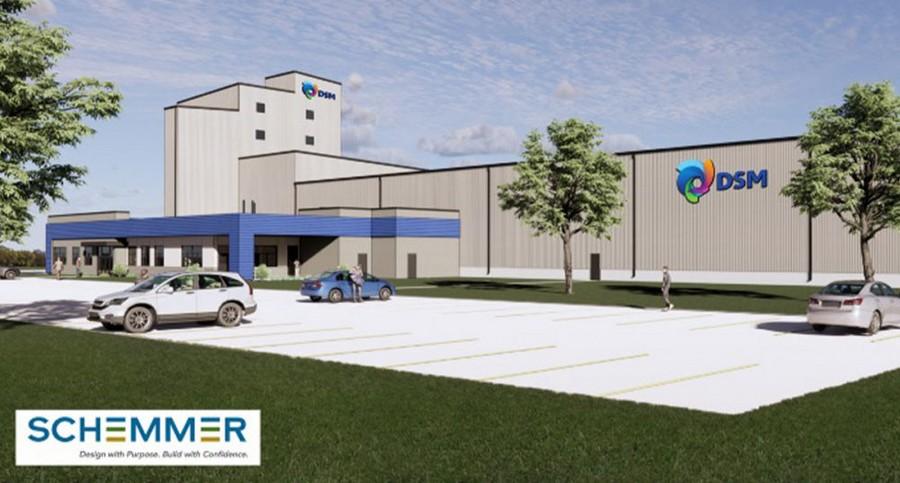 Vitamins
Vitamins
2+ MIN
09/05/2023
DSM Establishes Tonganoxie, Kansas, Pet Food Premix Plant
The new facility, located in the KC Animal Health Corridor, will supply the pet food industry with high-quality nutritional premixes for use in branded pet food products worldwide. The investment will include precision micro-batching capabilities, allowing for precise automated micro-addition of numerous ingredients to premixes in a fully traceable manner. Operations are scheduled for early 2025.
'The pet food industry has been looking for a better source for the highest quality, traceable and reliable nutritional ingredients for their products and we are thrilled to be able to deliver for the industry and for 'pet parents' with this new facility in Tonganoxie,' said DSM Co-CEO, Dimitri de Vreeze. 'We appreciate the support of Governor Laura Kelly, the Kansas Department of Commerce, the Leavenworth County Development Corporation, the City of Tonganoxie, Evergy and the Animal Health Corridor in making this state-of-the-art facility a reality.'
DSM, part of DSM-Firmenich, is a global, purpose-led leader in health and nutrition, applying bioscience to improve the health of people, animals, and the planet.
'DSM is a welcome addition to Kansas and the Animal Health Corridor,' noted Kansas Governor Laura Kelly. 'Having another industry leader locate here further enhances the globally recognized animal health ecosystem that is anchored in Kansas.'
'With the highest concentration of animal health assets in the world, the Kansas City region is home to a robust industry network, as well as abundant manufacturing and distribution resources,' added Kimberly Young, president of the KC Animal Health Corridor. 'The region continues to attract top companies in the industry, and we're proud that DSM has selected the corridor for this state-of-the-art, innovative new facility.'
by DSM
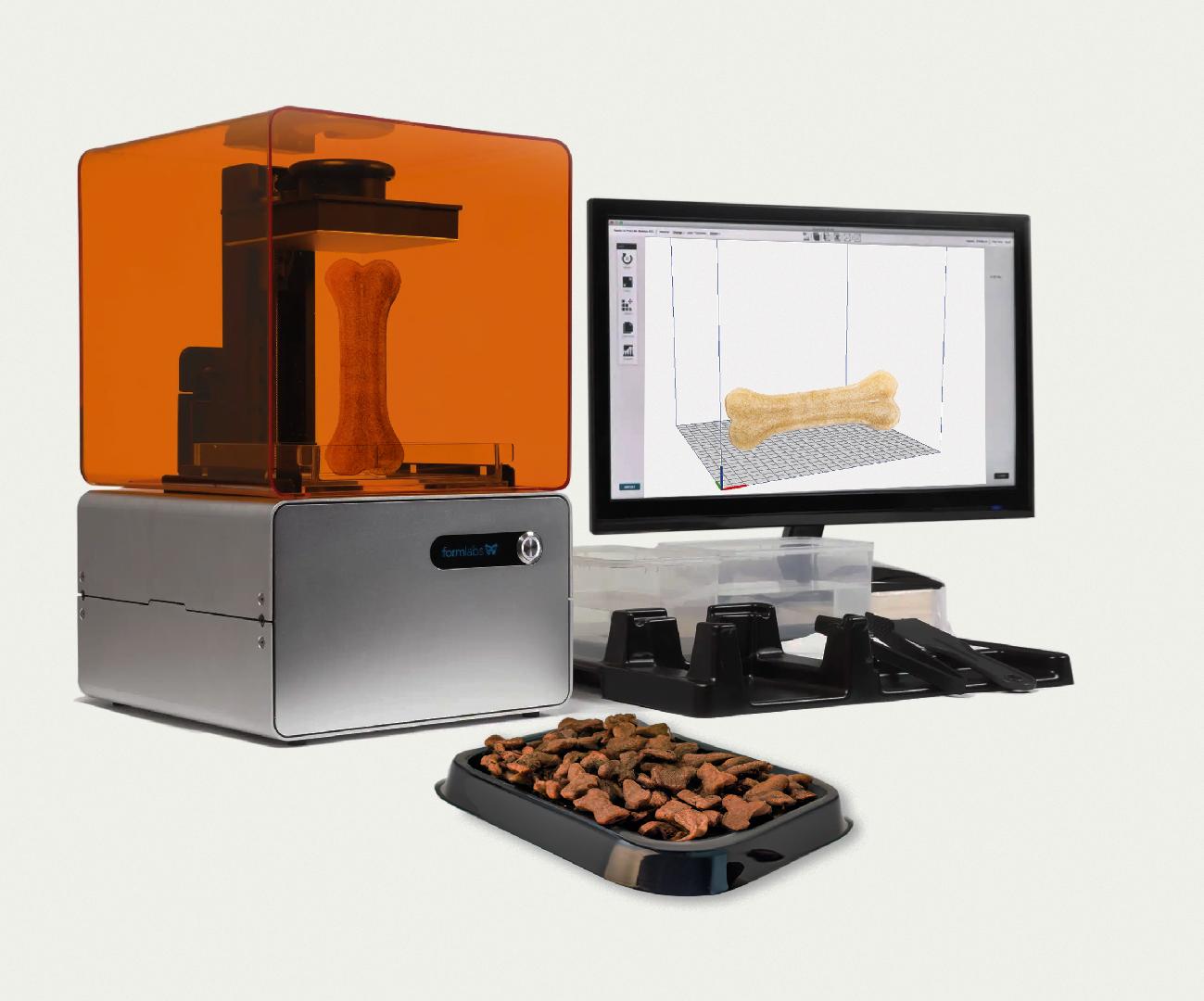 Trends
Trends
2+ MIN
08/05/2023
Por María Candelaria Carbajo
Elaboration of pet food with 3D printing: myth or possibility?
Let's get to know a little more about this technology that, it seems, is coming to settle, little by little, in the food market. Potential of pet snacks created with 3D printing 3D printers often serve as rapid prototyping and production devices. And, with the correct raw materials, some of those print creations can be consumed. As of today, most of these 3D-printed consumables are intended for humans, but the first experiments for animal food have already taken place since the technologies and ingredients for the production of pet food and meeting its requirements. 3D printing features Also known as solid free-form manufacturing or additive manufacturing, 3D printing has a wide range of applications in different areas, such as biotechnology and design science, mechanical and biomedical engineering, aeronautical science, the pharmaceutical industry, and of course, the food industry. Impression materials Food materials used for extrusion-based 3D printing can be broadly categorized into natively printable materials, such as chocolate and cheese, which have excellent printing properties and extrude smoothly during printing. Second, non-printable traditional food materials, such as vegetables, meat, eggs, fish, and fruits, are non-printable by nature and require pre-processing. Related research Various studies have focused on analyzing the properties of different food inks and 3D-printed constructions based on animal proteins such as beef, poultry, fish, eggs, shellfish, milk, cheese, and dairy ingredients. Some studies examine the development of special diets based on animal proteins and the possibility of 3D-printed products based on cultured meat. Currently, studies have already been carried out with raw materials such as: Beef Fish Milk and dairy products Egg Cheese Study conclusions Research and studies carried out so far indicate that 3D food printing offers numerous possibilities for the development of customized structures and products based on animal proteins including, among others, extraordinary flexibility in geometries, textures and flavors, and personalized nutrition. On the other hand, this technology requires the reduction of the size of the meat particles and the dilution of the meaty and salty taste and, in general, this is expected to reduce the value of premium meat products. Precisely for this reason, it is considered a great option for the use of harder and lower-value cuts and trimmings. The three-dimensional printing of consumables, until recently, was a utopia Products made with 3D printing hold great potential for the pet food sector, even becoming an important marketing tool to attract new potential consumers, especially young people. Among the various forms, 3D printing is, by far, the most impressive emerging technology available to the food industry for preparing complexly shaped, personalized foods. In addition, it provides extraordinary flexibility in geometries, textures, and flavors, and is already attracting the attention of most companies in the sector. However, although the future looks very promising, the truth is that pet food production with 3D printing is still in an experimental stage and, of course, will require further research and significant improvements before becoming a commercial reality. Source: All Pet Food Magazine
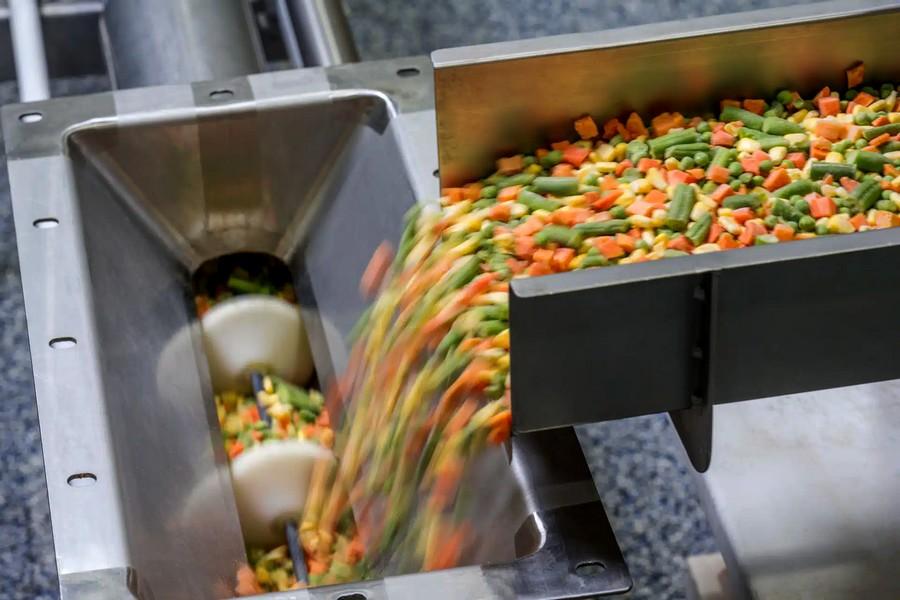 Conveying Systems
Conveying Systems
11+ MIN
05/05/2023
Your Go-To Guide For Stainless Steel Conveyors In Food Processing
Automated conveyor systems play a vital role in virtually every stage of food processing, from transporting raw ingredients to packaging finished products. What's more, in the food and beverage industry, hygiene is of the utmost importance. That's why stainless steel conveyors are such a popular choice in this sector (especially for conveying food).
Stainless steel is easy to clean and disinfect, making it the ideal material for conveying foodstuffs in accordance with FDA regulations. In this blog post, we will explore the use of stainless steel construction conveyors in the food production industry in more detail. We'll also look at some of the benefits of using this type of conveyor and explain how you can keep it clean and sanitary
What is stainless steel?
Let's start by taking a closer look at stainless steel. This is an alloy of iron, chromium, and, in some cases, other metals such as nickel and molybdenum. The main feature of stainless steel that makes it so suitable for food handling is its resistance to corrosion. This means that it won't rust when it comes into contact with oxygen. Regular steel (carbon steel), when exposed to oxygen, will transform into iron oxide (rust). Rust is porous and can flake off, becoming an excellent source of contamination. Stainless steel, on the other hand, forms a protective chromium oxide layer on its surface that prevents oxygen from reaching the iron beneath. As a result, it is much more resistant to corrosion than regular steel. What's more, stainless steel is also non-toxic and non-allergenic, which is important when you are conveying food products.
Benefits of stainless steel conveyors
Corrosion resistance is just one of the many benefits of using a stainless steel conveying solution in food processing. Let's take a look at some of the others:
No product contamination – Unlike other materials that degrade over time and release particles into the product, stainless steel is inert and won't contaminate the conveyed material. It is also non-porous, meaning bacteria and other contaminants cannot become trapped on the surface.
Easy to clean and sanitize – Because of its smooth surface, stainless steel is very easy to clean and disinfect. This is essential in the food industry, where hygiene is of paramount importance. We'll get into more detail about cleaning stainless steel conveyor solutions later on.
Doesn't change food flavor – Outgassing is a phenomenon that can occur with certain materials, whereby they release gasses that can change the taste of food. Stainless steel is completely inert and doesn't outgas, so you can be sure your product will not be affected.
Resistant to high temperatures – Stainless steel can withstand high temperatureswithout being damaged. This means it can be used in applications where the product being conveyed is hot.
Resistant to low temperatures – Just as stainless steel can withstand high temperatures, it is also resistant to low temperatures. This means it can be used in applications where the product being conveyed is frozen.
Of course, these are not the only benefits of using a conveyor system for food made from stainless steel. Stainless steel is also a very strong material that is able to support heavy loads, making it ideal for use in the food industry.
Is a stainless steel conveyor sanitary?
To start answering the question of whether stainless steel food processing equipment is sanitary, we first need to understand what the term 'sanitary' means.
In the food industry, the term 'sanitary' refers to an environment or piece of equipment that is free from contaminants such as bacteria, viruses, and other microorganisms. This is different from the term 'clean,' which simply refers to the absence of visible dirt. A piece of equipment can be clean but not sanitary, for example, if it has been cleaned with a cleaning solution that is itself contaminated.
So, are stainless steel conveyors sanitary?
The answer is no – no material is inherently sanitary. However, stainless steel is one of the most hygienic materials that you can use in food handling. This is because it is non-porous and non-absorbent, meaning that bacteria and other contaminants cannot become trapped on the surface. It is also made for easy cleaning and disinfection.
That said, even stainless steel conveyors can become contaminated if they are not used and maintained properly. It is important to remember that bacteria and other microorganisms are everywhere – on our skin, in the air, and even on stainless steel. If left untreated, these contaminants can quickly multiply, compromise food safety, and cause foodborne illnesses.
This is why it is so important to follow good hygiene practices when using stainless steel conveyors. In particular, you should ensure that the conveyor is cleaned and disinfected regularly, even if it is made of a food-grade material.
Cleaning and sanitizing stainless steel conveyors
Each facility has its own cleaning and sanitizing procedures developed according to the products being conveyed and the level of contamination risk. However, there are some basic steps that you can follow in cleaning and sanitizing your stainless steel conveyor:
Remove loose dirt and debris – The first step is to remove any loose dirt and debris from the surface of the conveyor. The reason why it is important to do this first is that you don't want to spread contaminants around when you are cleaning. You can remove loose dirt and debris by brushing, vacuuming, or using compressed air.
Pre-rinse – After you have removed the loose contaminants, you should pre-rinse the conveyor with water. This helps to remove any remaining impurities from the conveyor surface.
Apply cleaning solution – Which cleaning agent you use will depend on the type of contaminants present and the manufacturer's recommendations.
Rinse – Once you have applied the cleaning solution, you should rinse the conveyor with clean water. This helps to remove any remaining cleaning solution and contaminants from the surface.
Inspect – Before sanitizing, you should inspect the conveyor to ensure it is clean. In particular, you should look for any areas that may have been missed during the cleaning process.
Apply sanitizing solution – The final step is to apply a sanitizing solution to the conveyor. This helps to kill any remaining bacteria and other microorganisms. Once you have applied the sanitizing solution, you should rinse the conveyor with clean water.
Note that some sanitizing agents may not need to be rinsed off, so be sure to check the solution manufacturer's instructions.
Increase cleaning efficiency
It's no secret that cleaning, sanitizing, and maintaining conveyors can be time-consuming. In fact, according to our State Of Conveying 2022 report, 54% of food processing managers and engineers said that cleaning and maintenance are the most challenging aspects of conveying. Reasons for this include:
Downtime – When conveyors are taken offline for cleaning, it can lead to significant downtime and lost productivity.
Cleaning frequency – The more often a conveyor is used, the more often it will need to be cleaned. This can make it difficult to keep up with the cleaning times and schedule, especially if the conveyor is in constant use.
Complexity – Some food product handling conveyors are more complex than others, which can make them more difficult to clean. For example, some conveyors have many nooks and crannies that can be difficult to reach.
Fortunately, there are methods you can use to increase the efficiency of your cleaning process. Have you come across clean-in-place (CIP) mechanisms?
Clean-in-place systems
A CIP system is a method of cleaning that uses special equipment to clean the interior surfaces of the conveyor without disassembling it. CIP systems are often used in the food and beverage industry, as they are an effective way to clean complex equipment quickly and efficiently. Cablevey offers two main types of CIP systems:
Dry cleaning – Using brushes, air knives, urethane wiper discs, and special sponges with sanitizers. Dry cleaning is typically used for conveyors that move material that is not wet or sticky.
Wet cleaning – Using water jets, sanitizers, and detergents. Wet cleaning is typically used for conveyors that move wet or sticky material.
In this day and age, where every minute counts towards productivity, a CIP system can make a big difference.
the conveyor type matter?
If you choose a stainless steel conveyor for your food processing plant, does the type of conveyor matter? The answer is yes; of course, it does. The material the conveyor is made of is just one small part of the equation. You also need to consider the environment in which the conveyor will be used and the type of product that will be moved on the conveyor. Here are some common food manufacturing conveyors:
Belt conveyor
Perhaps the most widespread of all conveyors, belt conveyors are generally used to transport light to medium-weight products. A belt conveyor is composed of a belt that rests on two or more pulleys, which in turn rotate on shafts. The pulleys and shafts are powered by an electric motor. The belt on this type of conveyor can be made from a variety of materials. You can get plastic belt conveyors, rubber belt conveyors, and even metal belt conveyors. Not all of these represent a food-grade conveyor, though. Benefits:
Good for fragile materials
Can transport a variety of products
Drawbacks:
Not for steep inclines or vertical conveying
Not for wet or sticky products
If not enclosed, it poses a high risk of contamination
Bucket conveyor
Bucket conveyors, or bucket elevators, are composed of a series of buckets that are connected to a belt or chain. The buckets lift materials, such as grain, up to the top of the conveyor, where they are discharged into a chute. Even though horizontal bucket conveyors exist, incline conveyor options are more common, as they take up less space and can be used in a variety of settings.
Benefits:
Low driving power – energy efficient
Good for facilities with small floor plans
Good for inclines and vertical conveying
Drawbacks:
Ridiculously difficult to clean and maintain because of a lot of moving parts
Pneumatic conveyor
The main principle of material conveying in pneumatic conveyors is entrainment. In this type of conveyor, air is used to move materials through a system of tubes. A blower or a vacuum pump can generate the airflow.
Benefits:
High conveying speeds
Low preventative maintenance and cleaning costs
Flexible design – suitable for a variety of settings
Drawbacks:
Extremely hard on conveyed materials – material damage is common
It requires a lot of power to control the speed
Can be noisy
Tubular chain conveyor
A tubular chain conveyor is composed of a chain that runs inside a tube. Circular discs are evenly spaced along this chain, creating space between them for the conveyed material to fit into. The discs move along the tube, propelling the material forward.
Benefits:
Fully enclosed
Can be used for inclines and vertical conveying
Gentle conveying
Drawbacks:
Chain is in direct contact with conveyed material – high risk of contamination
Difficult to clean and maintain
Tubular cable and disc conveyor
We saved the best for last. For specific material types, such as breakfast cereal, snack foods, nuts, beans, coffee beans, rice, and similar, tubular cable and disc conveyors are the best option. These conveyors work on a similar principle as tubular chain conveyors, with one major difference – instead of chains and discs, they use cables and discs. There is no direct food contact with the cable, which decreases the risk of contamination. Also, these conveyors are easier to clean and maintain.
Benefits:
Fully enclosed
Gentle conveying – suitable for fragile materials
Extremely low risk of contamination
Easy to clean and maintain
Drawbacks:
Not for viscous or sticky materials
Which conveyor to choose?
A stainless steel conveyor system is only as good as the application it's being used for. Different conveyors are better suited for different tasks. To help you make a better decision, here are the top considerations you need to take into account:
Conveyor type – As we've seen, there are many different types of conveyors. Make sure to choose the one that's best suited to your needs.
Material type – Not all materials can be conveyed by all conveyors. Some materials are too fragile, while others are too dense. Make sure that the conveyor you choose can handle your material.
Conveyor throughput – The amount of material that needs to be conveyed will play a big role in deciding which type of food processing conveyor to choose.
Conveyor size and layout – Not every conveyor is suitable for every facility. The size of your facility and the layout of your production line will play a big role in deciding which conveyor to choose.
Some other considerations are the cost of the conveyor, the energy efficiency, and how easy or difficult it is to clean and maintain the conveyor.
Go for a sanitary design
We've already explained how no material is completely safe from contamination. Even if you choose a food conveyor system that's easy to clean, there's always a risk of bacteria and other germs getting into the food. That's why it's important to go for a sanitary conveyor design. A hygienic design minimizes the risk of contamination. It includes:
Easy access for cleaning – The conveyor should be designed in a way that allows easy access for cleaning. All parts of the conveyor should be accessible for cleaning, and there should be no dead spots where bacteria can accumulate.
No traps in the conveyor frame – The conveyor frame design has to prevent food from getting trapped in it. All food should be able to fall freely from the conveyor, without getting caught in any nooks or crannies.
No areas where water can accumulate – The conveyor should be designed to prevent water from accumulating anywhere on it. All wet areas should drain quickly, and there should be no places where water can pool.
No fasteners – Welds should be used instead of fasteners to prevent food from getting trapped in them.
It stands to reason that deciding exactly which type of stainless steel conveyor to choose for your food processing facility is a big decision. But with the right information, you can make the best choice for your needs.
Conclusion
Here are the main takeaways from this article:
Stainless steel isn't sanitary by default. But it is an excellent material for conveyors because it's easy to clean and doesn't rust.
The cable and disc conveyor is the best type of stainless steel conveyor for food processing applications. These food conveyors are fully enclosed, gentle, and have a low risk of contamination.
When choosing an industrial conveyor, consider the type of conveyor, the material you're conveying, the throughput, the size and layout of your facility, and the cost.
Make sure to choose a conveyor with a sanitary design to minimize the risk of contamination. A sanitary design includes easy access for cleaning, no traps in the conveyor frame, no areas where water can accumulate, and no fasteners.
Ready to buy a stainless steel conveyor for your food processing facility? Cablevey Conveyor can help you find the perfect one for your needs. Contact Cablevey today to get started
By Cablevey Conveyor
Source: All Pet Food
 Trends
Trends
5+ MIN
04/05/2023
Por María Candelaria Carbajo
How can technology improve supply chain challenges?
In context Two years ago, the chaos caused by the pandemic revealed the downside of common practices like just-in-time manufacturing and inventory control, inevitably causing many companies to revise their operating strategies. But, the truth is that, if we analyze objectively, most of these problems existed before March 2020. But what is the main cause? What are the recovery forecasts? What are the current stressors? And most importantly, what can we do to address these challenges? To make things worse, in the pet food industry, countless headlines in recent times highlight the rise of pet ownership, the expansion of the sector, developments in production and packaging, and even remark that food exports are increasing, all aspects of a solid and growing sector… with a supply chain plagued with obstacles and difficulties. Among these articles, we find a few that speak to this B-side: complications with ingredient procurement, container and packaging sourcing, transportation management, and potential risks to the availability of meat and poultry products due to livestock diseases, for instance. It is due to several of these drawbacks that organizations are digitally transforming the way they manage their supply chains by implementing technologies such as Blockchain, artificial intelligence, machine learning, IoT, and augmented reality. The result will be a massive increase in automation as well as trust and transparency throughout the supply chain, with increased physical asset tracking capabilities and shared documentation globally. Advanced manufacturing and automation are already changing supply chains and will continue to reshape the workforce and supply cost management. What will happen, then, with pet food supply chains? Once again, we can affirm that new technologies have the power to provide some answers and new paths to follow. First, let's see what the current challenges are: Transportation The bottlenecks stifling transportation are not new: they have only been exacerbated during the pandemic. Logistics-related challenges include coping with ever-larger ships and other forms of transportation, which means unloading more merchandise in tight spaces; the need for more modern cranes to operate at higher speeds, traffic congestion, lack of parking for truckers, and more obstacles. Raw material supply Supplies of animal matter are scarce. A recent pet food consumption report by the US Institute for Pet Food Education and Research indicates that beef and animal fats are the 4th and 5th largest category of animal ingredients in pet food by volume. What's happening is that, as fuel refiners add "renewable diesel" to their product mixes, they are using up stocks of the fats used to process biodiesel, including animal ones. The greater diversion of this raw material towards biofuels recently has pushed up the prices of all kinds of animal fats internationally. On the other hand, to these increased costs, we must add possible outbreaks of viruses or diseases that can further reduce the availability of ingredients of this type. As the last point, we cannot fail to highlight the warlike factor presented by the Ukraine war. Raw materials such as sunflower oil, white fish, cereals, and Russian fertilizers continue on the list of main affected in terms of availability, logistics, and distribution. Packaging disadvantages The problems that affect pet food manufacturers also affect manufacturers of packaging materials (and vice versa). Limited supplies of materials to create packaging or containers such as glass, cardboard, and aluminum and the scarcity of cargo containers to move them, for example, are a plus that delays and hinder the development of a fluid and efficient chain. The lack of materials is closely related to the energy crisis that has been taking place year after year in China, a major producer and exporter of these materials such as aluminum packaging, whose process requires magnesium, an element that requires a lot of energy to work. This need drives the government to reduce the manufacture of this type of packaging, which directly implies its availability. New technologies at the service of the supply chain Digital printing In response to the problems with these materials necessary for the creation of packaging, digital printing appears: not only does it offer a much faster response time, but several companies that are implementing it can obtain all the necessary materials in their local industry (or, at least, at a national level). The B side of this packaging option is its limitation in terms of bag sizes that can be achieved today. AI in control systems The current technology allows connecting people to almost anywhere in a production facility. If we use technology for communication, production teams will become more collaborative and effective, and operational and maintenance support areas will be able to reach multiple facilities. The companies at the forefront of technological innovation in the industry are already using high-performance graphics that highlight only the relevant information, as well as intelligent notifications based on the parameters of each machine. Industry 4.0 Internet of Things (IoT) technology enables data conversion into actionable insights, Big Data analytics, and machine learning training to improve performance and adjust it at optimal times, as well as global access to data through cloud-based storage. Today's solutions deliver data at microsecond intervals and overlay machine learning to make small adjustments to the process that optimize production results as they go. This technological advance implies computing power, technical connectivity, and data integration improvements. For its part, data acquisition and integration with automated enterprise resource planning (ERP) and manufacturing execution systems (MES) improve efficiency and optimize processes. Hyper-automation Hyper-automation is a framework that combines various technologies, such as legacy platforms and emerging technologies. It is being widely adopted in service-oriented and repetitive supply chains, such as the generation of compliance documents and the exchange of information through software applications. Digital twin in the supply chain A digital twin in the digital supply chain (DSCT) digitally represents the physical supply chain. It emerges from all the crucial and relevant data in the supply chain (end to end) and becomes the basis of decision-making. Edge Computing It's all about processing and analyzing data close to its collection point while matching IoT devices. This technology is especially needed during the demand for low-latency processing and real-time, automated decision-making. Smart (more) warehouses Organizations are pushing for "smarter" warehouses by leveraging emerging technologies like IoT and RFID (Radio Frequency Identification) for better data transmission and avoiding blind spots. We definitely can transform operating models with technological proposals Given the vulnerabilities in supply chains exposed during the pandemic, the logical progression would be to leverage digitalization with smart technologies. For this, companies must seek innovative technologies with the potential to disrupt and transform current operating supply chain models. Technological advancement will drive changes to the existing system for delivering products and services, and will revise the process of generating and sharing data across a more diverse set of functions. Undoubtedly, the future of supply chains and global trade, in general, will be completely transformed with the development of an increasingly digitized environment. Source: All Pet Food Magazine
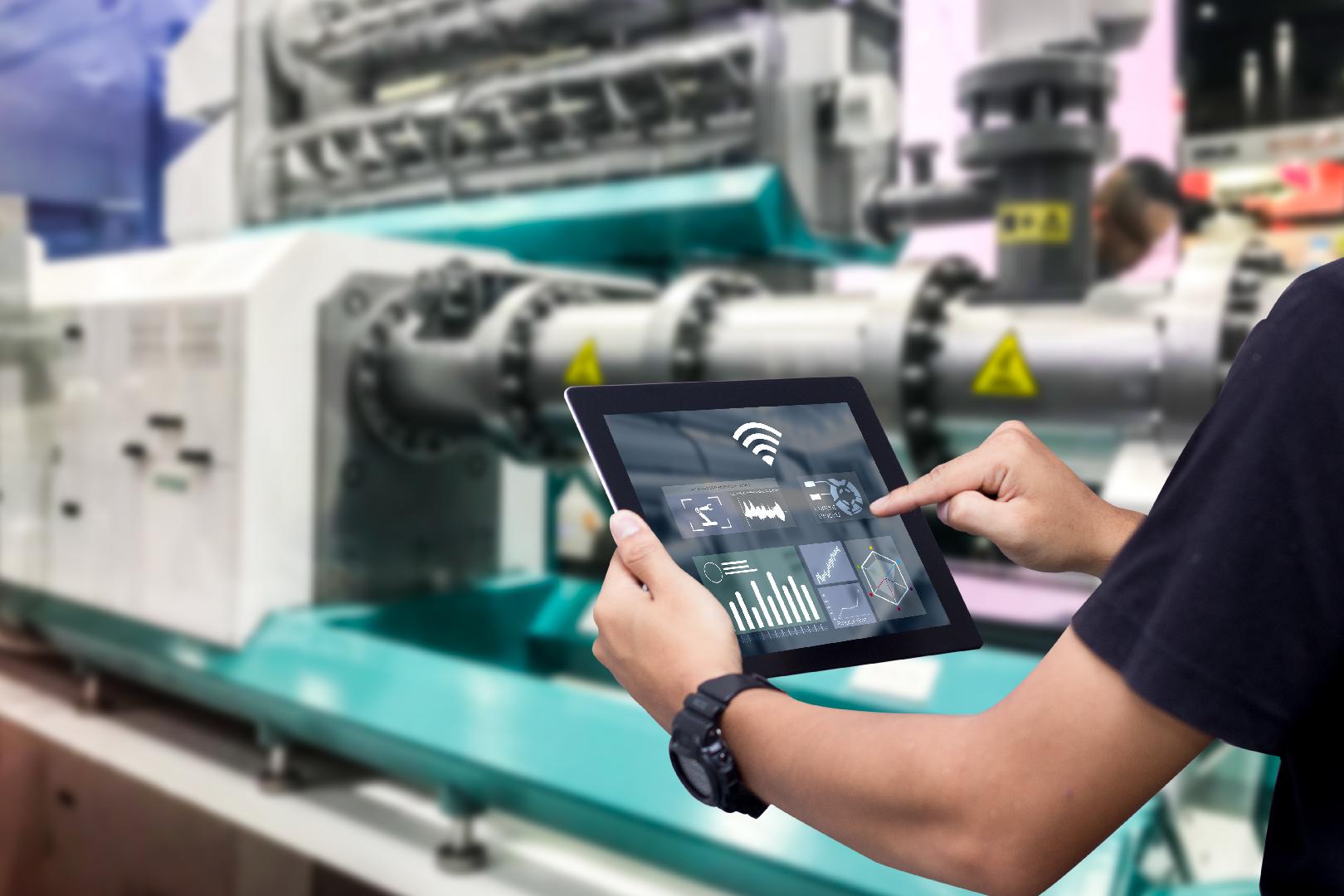 Manufacturing Process
Manufacturing Process
3+ MIN
02/05/2023
Por María Candelaria Carbajo
Automation in pet food: achievable or unrealistic?
The main goal? To reduce conflicts and challenges of the pet food production system. Currently, there are several points in the pet food production process where errors often occur which, in most cases, are not identified until the final product is obtained. It is here, precisely, where automation shines the most. Improving accuracy and repeatability, increasing productivity, facilitating scalability, decreasing waste, reducing human error, and improving security are just some of its outstanding benefits. Within this enumeration, it is fair to say that, probably, the most important benefit is product quality consistency, regardless of the shift, employee, or context. In addition to its benefits, and due to its technological nature, automation presents itself as a great solution, at a time when operation and distribution are affected by labor shortages. On the other hand, we cannot forget that automation, as well as practically all trends, derives directly from the human food production industry. This, added to the growing pet humanization, means that automation in pet food is nothing more than a natural consequence of the fact that both industries are increasingly interconnected and merged into very similar processes and raw materials. So, as pet food has become more humanized, equipment transfer from human food processing to pet one has become more and more common. In fact, we're even seeing companies that have historically been in human production now offering slightly modified equipment for the pet industry as well. Challenges hindering automation implementation So far, we have briefly discussed the benefits that automation can bring, but, logically, not everything is rosy for a technology still in the initial implementation phase. But are there challenges? What are the ones that most companies have to face? Finance and identifying what the company actually needs are just two of the major barriers to automation success. While automation in pet food production is becoming more attractive at all process stages, there are still some challenges to its adaptation and implementation. Financial investment The first challenge to mention is obviously the initial investment required to install any automation technology in the company. If, in addition, we consider the difficulty that arises in contexts of economic instability and inflation as afflicted in several Latin American countries, we understand the fear that emerges when considering an investment of the size required to transfer the operations of a production factory to an automated system. Of course, knowing how to make automation work within a particular company's brand and understanding the benefits is key to being willing to make that investment. "The most common challenge is understanding how to invest your money to get the most return. However, this challenge is lessening as the current job market has made it difficult for many companies to find workers. Automation can address labor shortages making the return on investment much faster.' Pete Ensch, CEO of WEM Automation. Knowing what the company needs and the best way to achieve it Choosing which vendors to select to implement the right automation for successful operation is a challenge in itself. For this, it is essential to have a certain degree of knowledge about the appropriate instrumentation to adapt to the environment and the specific measures required of the particular company. This specific challenge extends to pet food in all facets, and different areas have different needs that they may or may not know how to satisfy with automation. Stores and consumers Pet food retail businesses are largely fragmented. Some have already been encouraged to experiment with (or are familiar with) automation to some degree. They are ready to use it and, above all, willing to continue to deepen its implementation. However, for their part, a large number of consumers have never heard of terms such as automation or artificial intelligence, so they are very skeptical or unwilling to change the current system which, in one way or another, works for them. This latter group will need much more time and information about the benefits automation and Internet of Things (IoT) systems with embedded AI and machine learning bring to all participants in the chain. The future of automation in pet food production Everything indicates that pet food is heading towards better quality, safety, and humanization, hand in hand with automation. This technology, according to experts, will continue to become increasingly intelligent for the benefit of food production. Undoubtedly, technology and automation are here to stay. Source: All Pet Food Magazine
 Market Information
Market Information
4+ MIN
01/05/2023
Press Realease - PAYPER focuses on digitalization, accuracy and performance.
PAYPER stands for accuracy, control and performance Accuracy Weighing has been at the centre of interest in PAYPER's R&D&I department ever since the first weighing device was designed in 1973. In line with the ongoing commitment to weighing accuracy, PAYPER will present MSX: a new dynamic weight controller. It ensures maximum accuracy at high bagging speeds, being one of the most accurate weighing systems in the bagging industry. Accredited by official metrology institutions, it is specifically designed for the bagging of all types of solid products: granules, flakes and fine powders. Control Pulsar ensures full control of the production processes with a single click. This new cloud-based software solution enables bulk good producers to digitalize their bagging lines taking their production to the next level. At PACK EXPO International in Chicago in 2022 PAYPER introduced the Pulsar-S, to enhance customers' after-sales-service experience. We are now introducing Pulsar M at the main meeting point for the packaging industry worldwide, Interpack 2023. This all-in-one digital solution allows advanced management of production and service. Pulsar S: Smart Customer Service and Maintenance Make the most of your production line with Pulsar S. The different modules allow plant managers, maintenance managers and operators to work together to increase the lifetime and effectiveness of the bagging line machinery. Among other actions, it is possible to perform: Predictive Maintenance: risk management, task scheduling and tutorials to reduce maintenance costs and machinery downtime. Quick spare parts management: orders, stock and deliveries. Easier Customer Service communication: Omnichannel support. Remote training and technical support: using augmented reality. Data-driven decisions: real-time KPIs and analytics. Pulsar M: Future-proof production management Pulsar M is a cloud-based software solution for the collection, visualization and analysis of data from complete bagging lines: from dosing to warehouse management. Among other functions, it is possible to access: Overall Equipment Efficiency (OEE) measurement. Alarm management: Step-by-step indications. Traceability: batch management. Monitoring: The status of every machine in the line can be monitored from any one of them. Performance PAYPER designs and manufactures high-performance bagging lines for industry leaders: Turnkey projects including dosing, weighing, bagging, palletizing and overwrapping. Dosing and weighing: Wide range of dosing systems that adapt to the size, shape and fluidity of the product: gross or net weight, free-flowing or not, powdery, flakes or granulates. Bagging: High-performance automatic bagging machines for open-mouth bags, valve bags and FFS-tubular bags. Also, filling stations for Big Bag production lines. Palletizing: A wide range of robot and conventional palletizers for perfect pallet stability. Overwrapping: End-of-line solutions for ideal finishing and protection such as wrapping machines and stretch hood machines. PAYPER will be showcasing an FFS bagging machine from the ASSAC series at the stand. This bagging system forms, fills and seals bags from a continuous tubular reel of plastic. An efficient solution for bagging all types of bulk solids applied in the food, petrochemical, fertilizer and building industries. The ASSAC FFS bagging machine stands out for its compact and heavy-duty design with easy access for cleaning and maintenance. Among the available options are: hygienic design for the food and chemical industries and an anti-corrosion configuration for handling corrosive and abrasive products. Do not miss the opportunity to see first-hand one of the fastest bagging machines on the market with performances of up to 2,600 bags/hour. 50th anniversary PAYPER is celebrating an important milestone in its history in 2023, its 50th anniversary. "We are very proud of what we have achieved since we designed our first weighing system for the fertilizer industry in 1973. Today, we are recognized worldwide as one of the market leaders in packaging for bulk solids. This has only been possible as a result of the close collaboration with our worldwide team, our long-term partners and our customers which has taken us to where we are today." Josep Mª Godia, Managing Director at PAYPER. About PAYPER PAYPER's headquarters was established near Barcelona, Spain, in 1973. PAYPER designs and manufactures next-generation packaging lines for bulk solids. Customers in more than 75 different countries have chosen PAYPER as their supplier for over 4,000 projects. With 50 years on the market, it has gained extensive knowledge in numerous sectors, from the agro-food industry to the chemical and animal feed industries. A global team of +140 highly skilled professionals provide rapid assistance throughout the product's life cycle. An efficient worldwide sales and service organization is composed of 8 subsidiaries and an extensive network of agents, ready to answer all of the customer's questions. Press contact: Noèlia Sans - Marketing Director Source: PAYPER
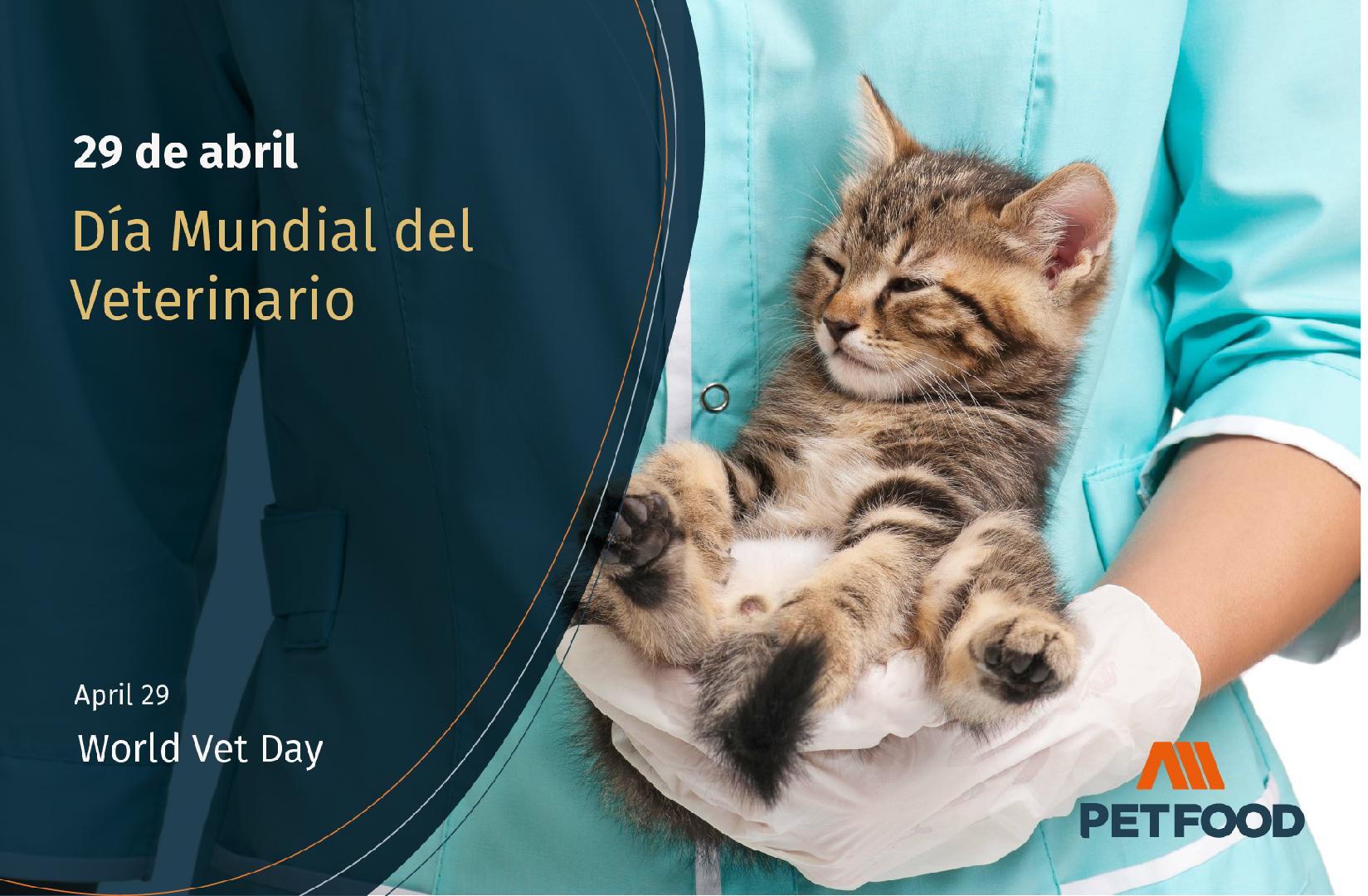 Veterinary
Veterinary
1+ MIN
29/04/2023
World Vet Day
The importance of Vets
World Vet Day recognizes the essential and varied work that they do around the world.
Those who have a pet at home, which is consider a member of the family, understand the work that Veterinary Clinics do to keep our animals healthy. Vets are essential in helping us to take care ours pets in the same way that we deal with our own health.
Socially, they also do important work in every community, rescuing stray animals, running sterilization programs to reduce the number of them, and running free vaccination campaigns to prevent the transmission of dangerous diseases.
On the other hand, another great contribution that Vets make to the pet food industry is writing investigative articles to improve the pet food formulation and as a way to prevent typical diseases of each breed, age, weight, etc.
The much-mentioned "Humanization of pets" requires that pet food not only provides animals needs, but also convince its owner that they have made the right choice.
In All Pet Food we value the job that Vets do for our companion animals, who play an important role in each home. As well as those who share technical articles so that our readers have information to make better decisions to feed and improve their pets lives.
Source: All Pet Food
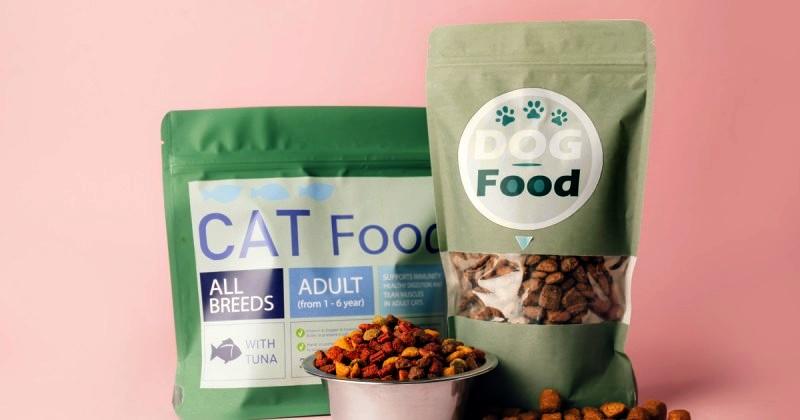 Labels
Labels
2+ MIN
28/04/2023
Updates to Pet food Labels: A long Time Coming!
When launching the multi-year, AAFCO-led, pet food label modernization effort, the association intended to provide consumers with easy-to-understand information on their pets' food packaging so that they could comprehend the nutritional benefits their pets gained from eating the food or treats and how to best feed their pets and store the remaining food. It sought to do this by creating alignment with the formatting of human food nutrition boxes, provide front-of-packaging pet nutrition cues for consumers, consider the development of handling and storage instructions, and change the analysis requirements for fiber. Industry, including many American Feed Industry Association members, has worked alongside state and federal regulators in the step-by-step process of developing new analysis requirements, packaging narrative and visual prompts to increase consumers' understanding of pet food labels. For example, nutrition fact boxes, similar in format to what are used on human foods, will state the number of calories per common household unit, such as a cup or can of pet food. The updated facts box format will also include the actual amounts of protein, fat, dietary fiber and carbohydrates instead of the previously used minimum guarantees for protein, fat and crude fiber. These changes will support consumer selection of pet foods to best meet the needs of individual pets. Pet food manufacturers will also have the opportunity to voluntarily use standardized icons to provide information about best practices for storing pet foods and common handling steps, such as hand washing and separating utensils for serving pet foods. They will also be asked to provide clear language on the lower third of the front of pet food packages to plainly state the intended uses of the food with statements, such as 'Complete food for adult dogs,' or 'Cat and kitten treats.' By the end of 2024, we expect that some pet food labels may start to include the changes brought about by this herculean effort, but it will take many years before all manufacturers are able to be in full compliance with the required changes. Educational materials are currently being developed to assist manufacturers, regulators, retailers and veterinarians in their different roles for the promotion and regulation of the new label formats and to assure consumer understanding of the increased information available for determining pet food choices. So where does that leave us now? The changes passed the AAFCO Pet Food Committee and are awaiting a vote by the full AAFCO membership later this summer. The next big steps will include the demanding task of state-by-state approval of the AAFCO-sanctioned changes, industry adoption of the new label requirements, and retailer and consumer education about the revised labels. It has taken eight years to formalize the changes to pet food labels and now in 2023, a new shark has taken the stage. Move over Left Shark, it's all about 'Baby Shark' now. by AFIA
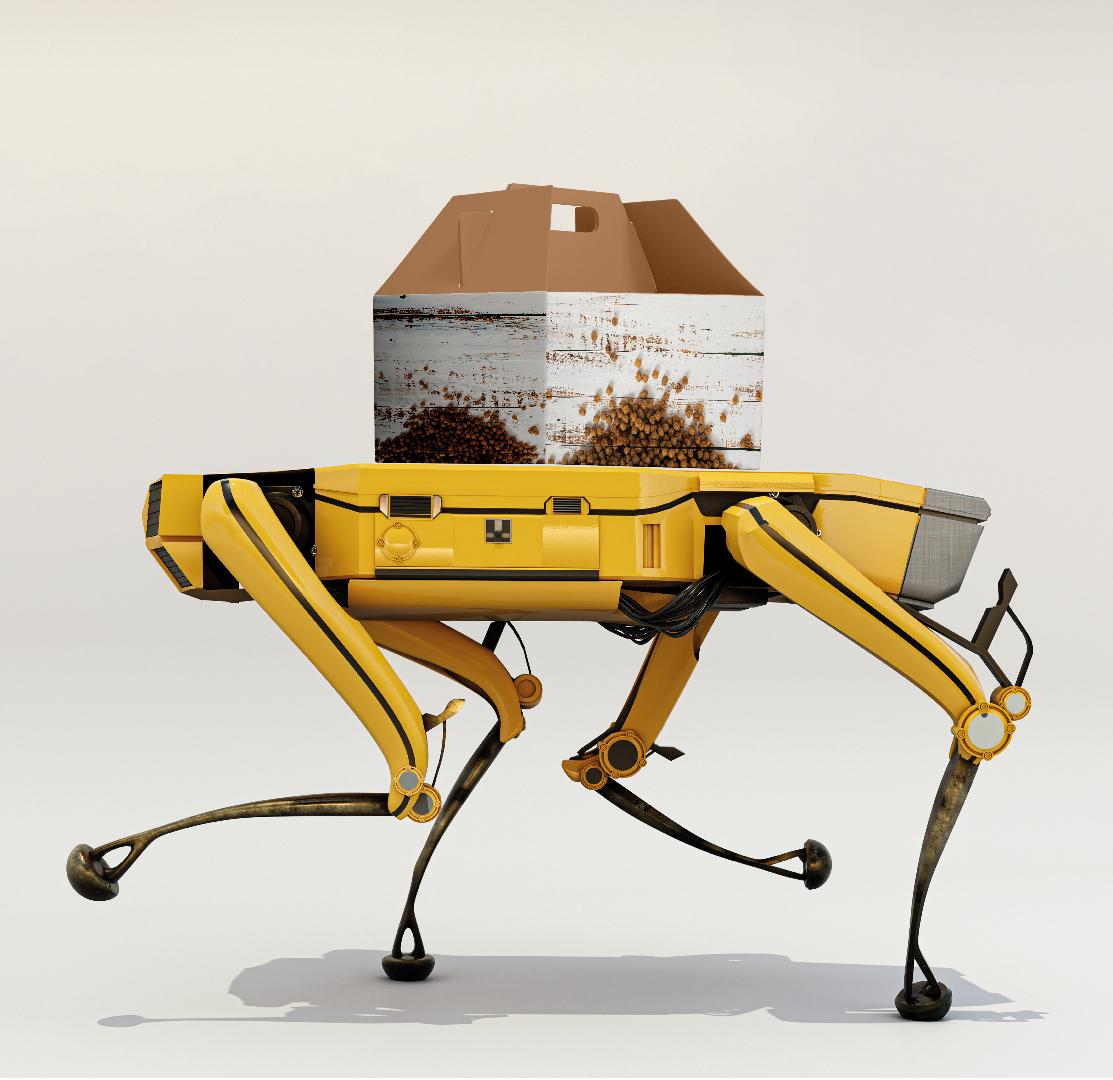 Packaging
Packaging
4+ MIN
27/04/2023
Por María Candelaria Carbajo
Automation trends in pet food packaging
However, the packaging sector is the one perceiving the major opportunities and benefits of converting manual processes into mechanized ones. The man's best friend: a market full of possibilities In this era of pet food driven by quality suitable for a humanized pet, the options on the market have never looked so aesthetic and never had such a promising future ahead of them. To be part of that bright future, packaging production companies are beginning to find alternatives to modernize their products and processes and adopt more sustainable and innovative approaches. Automation is undoubtedly the Queen of all technologies in test and deployment. Packaging is also in demand Recent growth in changing and challenging demand for different packaging styles demonstrates that there is room for both rigid and flexible versions. Factors from increased ownership to pet humanization are spurring further diversification in products and packaging. 'General demand in pet food is rising at quite a high rate, but this is quite generally known. What is more interesting to us is the increased diversity', Milou Jansen, Lan Handling Technologies. Non-stop growth: automation in food packaging Automation in the food packaging process involves robotics for food material handling in the packaging process. Currently, most of the facilities of this type use complex machines throughout the assembly line, compared to a few years ago, when the man was the one in charge of these tasks. Application in the pet food industry Today, there are robotic solutions for every task that makes up the packaging line, from simple pick and place to complex operations such as sealing or bag making. Benefits of automation in food packaging Security Automated industrial robots increase workspace protection and safety, thus preventing worker injuries. In addition to reducing risk and proper machine maintenance, we can avoid system errors and breakdowns that can cause not only unforeseen expenses but also stop the production chain. Contamination The packaging stage presents a significant risk of biological, chemical, and physical contamination of food products (by foreign objects in the packaging materials, cleaning compounds, or dirty or broken packaging materials, for example). Using hygienic packaging methods that minimize human contact and other contamination sources is part of the automation benefits. Scalability The use of robotics in the food industry can increase production line productivity considerably, being able to process large volumes at an amazing speed and, at the same time, minimize the need for labor. Flexibility Robot performance and production can be adjusted according to each product requirement. Reduced costs By comparison, in the long run, manual canning is much more costly than automated canning, which requires less labor and little to no regular maintenance to avoid more costly breakages. Result consistency Since the packaging is done robotically, human error in operations, weighing, and precision is avoided. Full traceability Automated food packaging provides end-to-end traceability of the entire production line, providing accurate records of the facilities and processes a food product has gone through. Sustainability Automation can also be a step towards greater sustainability. Yes, machines require energy and raw materials, but by avoiding human error, waste is avoided in large quantities. Automation trends in food packaging The demand for robotics in the food packaging sector is increasing dramatically, mainly because more and more manufacturers are realizing the convenience and efficiency that these machines provide, so they are adopting them to meet the growing demand. Let's know the most used variants currently: Pick and place Processed foods are often uniform in size and shape, making them easy to handle with a robotic gripper. Pick and place robots lift food products from one place and set them in another, even from a moving assembly line. With the simple action of picking and placing, they can identify, align and place the product simultaneously. The non-robotic alternative would be to use fixtures, which are inflexible to product changes and can take up a lot of space. Raw food packaging This process involves taking raw or processed food products and wrapping them, such as raw vegetables, fruits, seeds, grains, etc. This primary packaging technology specializes in these items generally using paper or polyethylene material that does not chemically react with food and is cost-effective. Depanning Baked or frozen products are mass-produced, and robots are needed to leave them ready for primary packaging. This process typically involves scooping up an entire tray of baked goods with a specialized demolding tool. Denesting This process is often carried out with demolding: the demolding robot takes an object stacked in "the nest" and places it where it belongs. Robots that do this do not deal directly with food but rather sort packaged items for delivery to the packing station to reduce downtime. Boxing Secondary packaging involves taking individually packaged products and grouping them into boxes or containers already sealed. These robots, known as boxing machines or case packers, can be used in a variety of secondary packaging applications, including delicate food handling. In addition, they are also usually in charge of assembling the boxes from cardboard sheets. Palletizing Palletizing systems are the last step in the food production and packaging line. It involves stacking boxes one on top of the other and preparing them for distribution and shipping. This is almost always a tertiary packaging method accomplished by collaborative robots. The future of packaging automation is positive Food packaging has three main purposes: preserving products, providing information, and attracting consumers. Implementing a smart food packaging solution ensures that products are packaged in the most hygienic, informative, and attractive way possible. The packaging process is often your last checkpoint before your product leaves your production facility, so getting it right is essential, but not just for food safety reasons. Today, it is an instance of the production process that, if done correctly and robotically, can bring great benefits (instead of problems) to the company. Source: All Pet Food Magazine
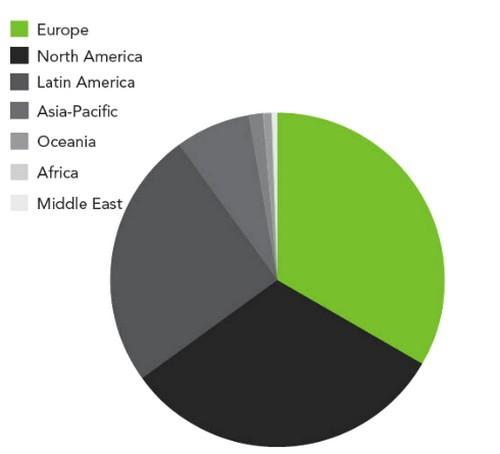 Market Information
Market Information
3+ MIN
25/04/2023
Global pet food production increases 7.25% in 2022
Alltech recently released its 2023 Global Feed Survey and Agri-Food Outlook report, detailing the global animal feed and pet food production for 2022, as well as providing estimates for 2023. The annual report includes data from 142 countries and more than 28,000 feed mills.
Pet food production
Of all species sectors measured by Alltech, pet food had the most significant growth. Global pet food production totaled 35.27 million tonnes (MT), a 7.25% increase from 32.88 MT in 2021.
Europe remains the top producer of pet food at 11.78 MT, a 1.65% increase from 2021, though the region faced the biggest decrease in global animal feed production. Within the region, France experienced a 75% increase in production, the highest in Europe. The United Kingdom remains the second-largest producer of pet food, though its production did not increase from 2021. Russia detailed a 9% increase to 1.35 MT.
North America follows close behind at 11.20 MT, a 5.66% increase from 2021. The United States continues to lead the pack in the region. The country faced a 6.12% increase in pet food production, amassing 10.40 MT, overcoming high material prices, supply chain disruptions and low producer returns. According to Alltech, the freeze-dried and dehydrated pet food space within the United States witnessed a 35% production increase. Mexico produced 1.40 MT and Canada produced 0.80 MT of pet food for the year.
Latin America, Oceania and the Middle East regions experienced the highest growth in pet food production from 2021, though these regions still remain far behind Europe and North America. Latin America's production increased 19.22% to 8.86 MT. Production in the Middle East increased 17.25% to 0.11 MT, and production in Oceania increased 11.06% to 0.50 MT.
he Asia-Pacific region witnessed a 9.33% increase in production, amassing 2.48 MT, with the Philippines increasing its production by 34%. Alltech attributes this increase to a growth in pet ownership and a need for locally produced pet food caused by COVID-19 lockdowns.
Unlike every other region, Africa experienced the only decrease, dropping a drastic 24.57% to 0.34 MT. According to Alltech, Kenya was the only area in Africa to experience an increase in production.
Total feed production
Global animal feed production remained relatively steady, slightly decreasing 0.42% to 1.27 billion tonnes (BT). Alltech attributes this decrease to many factors, including animal diseases, severe weather and Russia's invasion of Ukraine. 'Animal diseases have disrupted feed production in more than 80% of reporting countries,' stated Alltech.
The Asia-Pacific region remains top-dog in feed production, though the region's production slightly decreased 0.51% to 465.54 MT. Europe follows behind with an estimated production of 263.23 MT, a 4.67% decrease from last year. North America faced a small increase of 0.88%, amassing 261.39 MT. Latin America's total feed production increased 1.6% to 190.91 MT.
The Middle East faced the largest growth in total feed production, increasing 24.73% to 31.79 MT, while Africa witnessed the largest decrease of 3.86%, bringing its total feed production to 42.79 MT. Oceania remains the lowest producer of animal feed, though its production increased 0.32% to 10.45 MT.
The Top 10 feed-producing countries, which consume more than half (64%) of the world's total feed, are:
China (260.74 MT)
United States (240.40 MT)
Brazil (81.95 MT)
India (43.360 MT)
Mexico (40.138 MT)
Russia (34.15 MT)
Spain (31.23 MT)
Vietnam (26.72 MT)
Argentina (25.74 MT)
Germany (24.34 MT)
Most of the Top 10 countries faced small increases and decreases in production, except Vietnam, which witnessed a 27.72% increase in total feed compared to 2021, allowing it to surpass Argentina and Germany. For 2022, Russia overcame Spain, which faced a 12.85% reduction.
The top three countries all reported supply chain issues. In China, high ingredient prices, low producer returns, animal diseases and geopolitical events are hampering production. The United States is battling high material costs and low producer returns and Brazil is facing severe weather issues and geopolitical events. The technology currently impacting production in these countries includes artificial intelligence, biosecurity measures, and data collection and analysis.
By Pet Food Processing
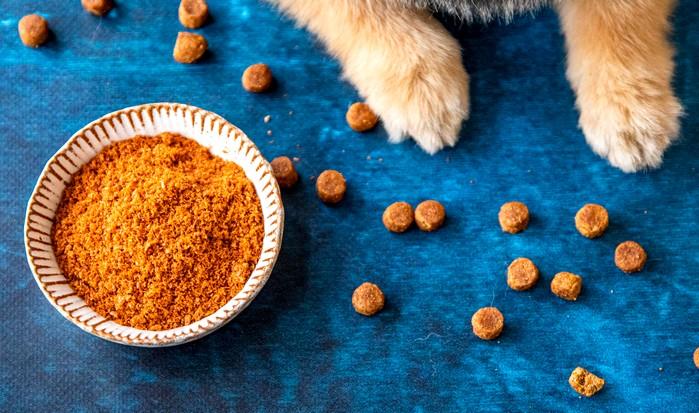 Animal Origin
Animal Origin
3+ MIN
24/04/2023
New study: Krill effectively increases Omega-3 Index in pets
In a new study conducted by the Swedish University of Agricultural Sciences and Aker BioMarine, scientists evaluated the performance of three different omega-3 sources in canine feeds. Of the three ingredients tested, the krill-based ingredient, QRILL™ Pet PL Nutri Plus (QRILL Pet's flagship krill meal product), was most effective in raising the dogs' Omega-3 Index.
This study builds on a previous feeding trial conducted in 2020 by Aker BioMarine, which showed that of the dogs fed either QRILL Pet PL Nutri Plus (8%) or fish oil, the QRILL Pet group exhibited the greatest improvements to their Omega-3 Index after six weeks. In this new trial, the researchers aimed to build a greater understanding of how krill meal, at a lower inclusion level, would perform in comparison to two other omega-3 sources, namely fish and flaxseed. All three providing similar amounts of omega-3 to the study diets.
'The hypothesis we tested was whether krill, at a lower inclusion level of just 3% on a dry matter (DM) basis, would be as or more effective in raising the dogs' omega-3 levels than other ingredients when omega-3 content was similar. We believe that both the delivery molecule of omega-3 as well as the type of omega-3 in a diet matters. To understand this, we did a side-by-side comparison of EPA/DHA from krill with two other omega-3 sources (EPA/DHA from fish and alpha-linolenic acid from flaxseed) which both are commonly found in pet food today,' says scientist Hanna Lindqvist from Swedish University of Agricultural Sciences.
4-week 3 -arm trial tests 3 different omega-3 ingredients in the dog feed
Before launching the experiment, the omega-3 levels of the 45 participating Alaskan Huskies sled dogs were measured to establish a baseline. Researchers found that the Omega-3 Index for the dogs was at a low starting point (at 1.3% on average), a state that is not uncommon in pets, they report.
Over the next four weeks, the dogs received one of the three test feeds. The omega-3 ingredients were included in the raw food provided to the dogs twice daily. The trial was run during a low-training period for the dogs, meaning their dietary needs at the time were on par with the average active dog.
Key findings: Which omega-3 ingredient was most effective?
Krill meal, in the form of QRILL Pet PL Nutri Plus, was most effective in raising the Omega-3 Index in the dogs – bringing it to an average of 2.4%.
Fish meal was the second most effective source of omega-3, raising the Omega-3 Index to an average of 1.9%.
Flaxseed (alpha-linolenic acid) had no significant effect on the dogs' Omega-3 Index.
'What we learned from this trial was that not every omega-3 source performs equally, and that both the delivery molecule of the omega-3`s as well as type of omega-3 makes a difference. The phospholipid omega-3 in krill appears to be more effective than triglyceride omega-3 from fish or alpha-linolenic acid from flaxseed. There is an opportunity for commercial feeds to benefit from a more effective ingredient, and we found that even in lower doses, krill meal is still the most effective in terms of raising the Omega-3 Index in pets,' says Hanna Lindqvist.
About QRILL Pet
QRILL Pet is a product of Aker BioMarine, a leading biotech innovator and Antarctic krill-harvesting company for consumer health and animal nutrition. The QRILL Pet product line consists of 3 products: PL NUTRI Plus (our flagship krill meal product) PL OMEGA Plus oil, and ASTA OMEGA Plus oil. When developing our functional marine ingredients for pets, we kept our focus on the needs of pets and pet food formulators. Aimed at keeping pets healthy, QRILL™ Pet is not only a superior omega-3 source but also contains a powerful antioxidant called astaxanthin, natural choline, and palatable marine proteins. The unique distinction of krill omega-3s is that they are mainly bound to phospholipids. This superior marine ingredient is beneficial for cats, dogs, and even horses at every life stage.
By Qrill Pet
Source: All pet Food
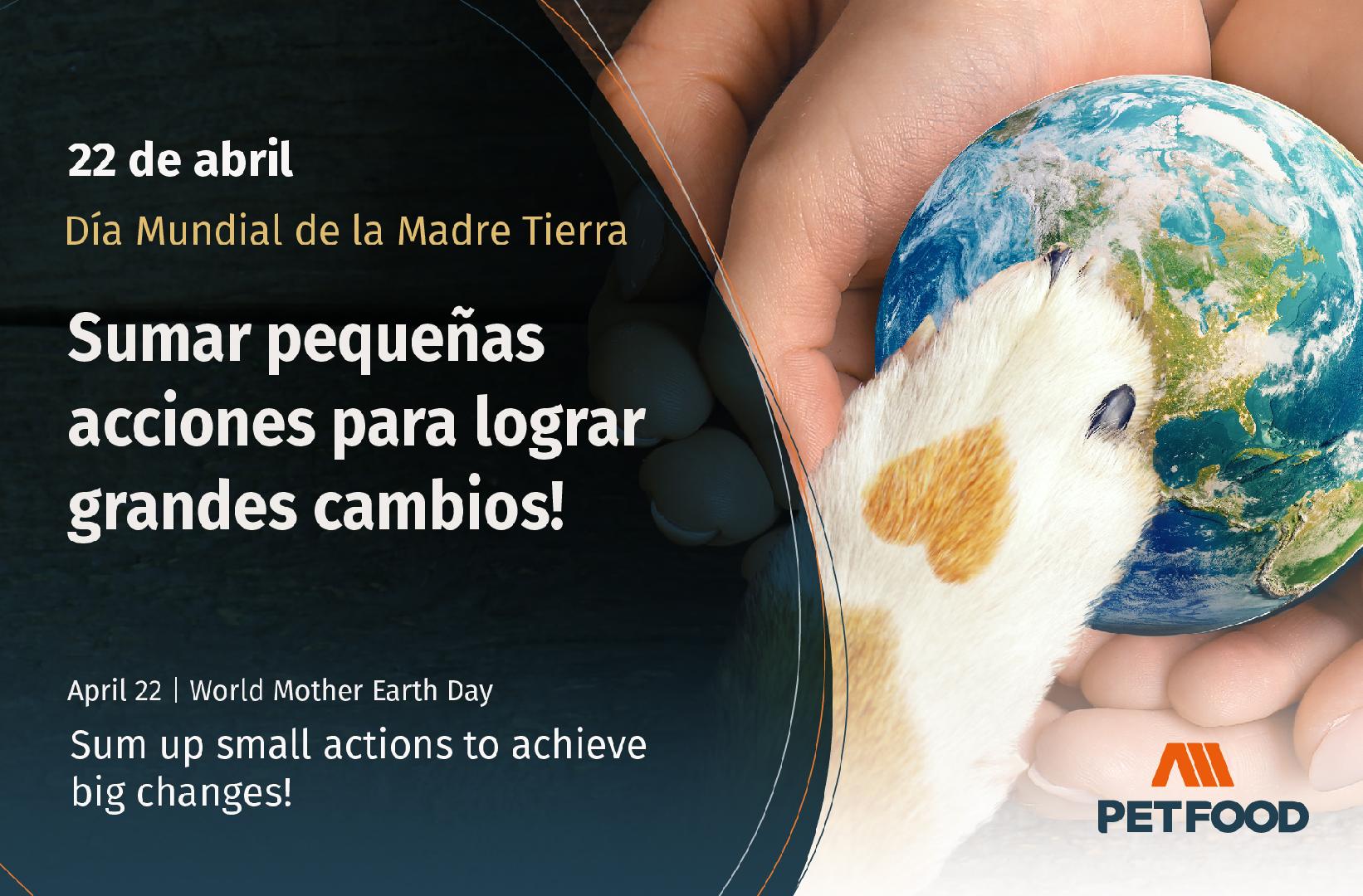 Trends
Trends
2+ MIN
22/04/2023
World Mother Earth day
Climate change, human-induced changes in nature, as well as actions that disturb biodiversity, such as deforestation, intensive agricultural and livestock production, or the increasing of illegal trade in wildlife, may accelerate the rate of destruction of the planet. This Mother Earth Day is the first to be celebrated within the United Nations Decade for Ecosystem Restoration. Ecosystems support all forms of life on Earth. The health of our planet and its habitants directly depends on the ecosystems health. Restoring those that are damaged will help to end poverty, combat climate change, and prevent mass extinction. But we will only succeed if every person or corporation does their part. As we always mention, and more than ever on this World Mother Earth Day, from the pet food industry we remember that we need a change towards a more sustainable economy that works for people and the planet. That is why the companies in this industry, which does not stop growing, are committed to developing in harmony with nature, either by incorporating equipment that reuses non-renewable resources and minimizes environmental impact using sustainable packaging, certifying standards norms that guarantee their processes, etc. United Nations International Days The existence of international days predates the creation of the Organization; however, they have been adopted by the United Nations as a powerful instrument to promote these issues. Each international day offers many participants the opportunity to organize activities related to the goal of the day. The organizations and offices of the United Nations, governments, civil society, the public and private sector, schools, universities and, in general, citizens, turn an international day into an opportunity for awareness activities. So as a media, we take the advantage of promoting these dates, highlight them and remind the pet food community that the growth of the industry must accompany these initiatives. Each one of us is important to achieve change! What do you think? Source: All Pet Food
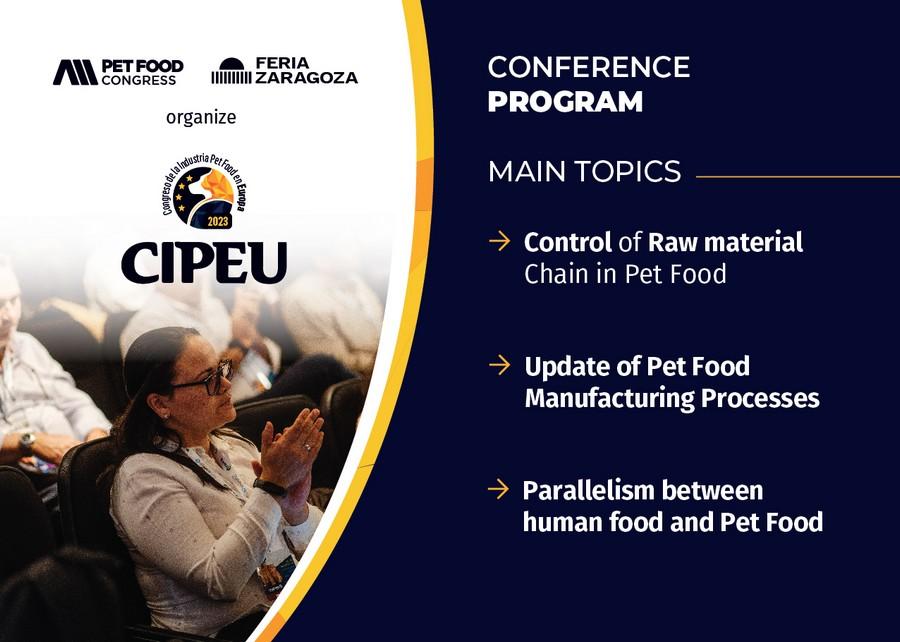 Market Information
Market Information
2+ MIN
20/04/2023
The meeting point of the Pet Food Industry in Europe
As a consequence of the oustandings results of 2019 and 2022 editions of CIPAL, held in Buenos Aires, Argentina, All Pet Food has decided to organize a Congress in Europe in a join venture with Feria Zaragoza CIPEU 2023 is an important meeting point for professionals, businessmen and experts of the pet food sector. The congress will provide a unique opportunity of networking for the attendees to share ideas, experiences and knowledge, as well as establishing valuable business contacts both in the exhibition area and conference room. Both days of the event there will be presentations and training given by industry experts, based on three major topics: Control of Raw material Chain in Pet Food: Alternative protein and fat ingredients, challenges and opportunities. Innovations in hygiene, safety and regulation. Preservation & shelf life of raw materials, important effects on performance and palatability. New formulations. Update of Pet Food Manufacturing Processes Optimization of dry and wet pet food manufacturing processes. High pressure technologies, lyophilization, dehydration and others. Packaging, distribution, sale and safety of novel foods: minimally processed diets, raw/frozen foods, high pressure, irradiation and microwave safety methods. Parallelism between human food and Pet Food New ingredients and nutrition concepts: importance and benefits. Functional ingredients: new perspectives. Marketing and regulation of novel foods. Perception of pet parents on the influence of these foods: humanization of pet food. CIPEU 2023 is an excellent opportunity to interact with industry members. The Exhibition Hall count with 38 booths, - almost sold out- booked by leading ingredient suppliers, processing equipment, packaging companies, laboratories and others . The exhibition will offer an excellent opportunity for participants to be updated with the latest innovations, technologies and trends in the pet food market. Don´t miss the opoortunity to meet the industry experts of Spain, Portugal and the whole european region. If you are interested on being part of the meeting, GET IN TOUCH WITH US! by All Pet Food
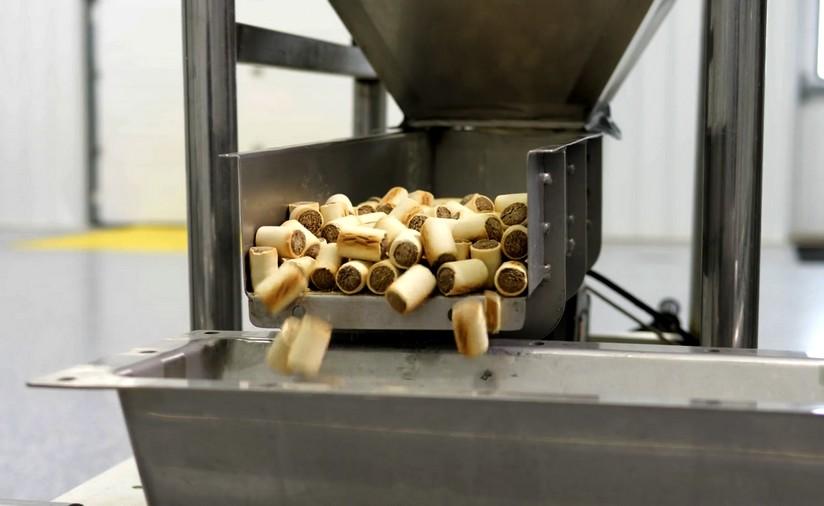 Conveying Systems
Conveying Systems
5+ MIN
19/04/2023
Pet Food Processors 'Test Drive' Conveyors at World-Class Facility
Even when people love the look of a car or SUV, most would not complete a purchase before a test drive to confirm how the vehicle performs on the road. Similarly, today an increasing number of pet food processors are realizing the importance of 'test driving' conveyor equipment at OEM test facilities, which use their actual product to ensure the equipment meets processor quality, flow, and cleaning requirements before they make the purchase.
In response, some OEMs have invested in state-of-the-art test facilities that allow pet food processors to run product on the same type of equipment they are considering for purchase, while benefitting from expert consultation to optimize their process.
'We encourage pet food processors to test their products [at our facility] and observe the results to ensure it meets their needs. They can ask questions in real time. They can test for fines or degradation. They can see for themselves how the product flows in the conveyor and how easy it is to clean,' says Larry Van Zee, Executive VP, retired at Cablevey Conveyors, a mechanical conveyor manufacturer that serves the pet food, specialty food, coffee, powder, nut, and frozen food markets. In more than 66 countries, the company has designed, engineered, and serviced enclosed cable and disc tube conveyors for over 50 years.
At its full-service product test center in Oskaloosa, Iowa, the OEM has tested more than 1,900 products, including pet food, beans, rice, grains, cereals, coffee, chocolate, and caramel corn peanut snacks, for some of the largest global brands. All products are run through a tubular disc and cable conveying system to observe the effects and fine-tune the results.
According to Scott Berning, Cablevey's Product Testing Manager, there are multiple reasons pet food processors decide to visit the test center. 'Customers may have products that we know will run well on tubular cable conveyors, but they want to see it in operation with their own eyes,' says Berning. 'They want to ensure the product will run properly, and their quality department typically checks as part of their due diligence before purchasing equipment.'
Berning adds that when Cablevey's applications department designs and quotes a conveyor and the manufacturer lacks sufficient experience conveying a specific product, the email quote states it is 'pending successful product testing.'
Some pet food processors want to evaluate tubular cable conveyors against other conveying options they may also be considering, such as bucket elevators or chain conveyors. Others are already familiar with tubular cable conveyors based on experience and want to show their managers that a similar solution could be implemented at their current facility.
Once the pet food processor is at the site, Cablevey product specialists and engineers typically consult with the customer to determine their specific goals and issues to be resolved. From this, they can proceed to design a conveyor with a set of features that addresses specific challenges.
'Our technicians and engineers can diagnose and prescribe a solution whether the concern is breakage, temperature, stickiness, abrasiveness or other issues,' says Berning. He notes that when pet food processors test products at the facility, they are provided full documentation of the results, including a detailed report with video and recommendations.
According to Berning, testing for product fragility and damage is usually the primary concern of processors. 'No matter the product, pet food processors want to keep their product intact and avoid damage during conveying,' says Berning.
He points out that tubular drag cable conveyors excel at reducing product damage since the units gently move product through a sealed tube using a coated, flexible stainless-steel drag cable pulled through on a loop. Solid circular discs (flights) are attached to the cable, which push the product through the tube without the use of air. These conveyors can transport delicate, precise blends for a wide variety of food types, and up to 2000 cubic feet per hour of materials in versatile layouts and configurations.
Still, quality assurance checks can be essential for processors, even those transporting products that seem hard to damage.Reducing product loss and maintenance is also important to pet food processors.
'Processors want to place their material in an inlet and then have all of it emerge from the discharge with minimal losses,' he says. Since tubular cable conveyors are sealed from end-to-end with product traveling one way in enclosed tubes, there is essentially no product loss and no issue with carry-back.'
Ease of cleaning the conveyor is also a top priority of pet food processors. Surprisingly, many processors visit the facility to witness how easily the conveyor can be cleaned. 'People come here from across the United States just to watch me perform a conveyor wet-clean and washdown even though it is something I have to do every day,' says Berning.
Traditional alternatives like screw conveyors can be difficult to clean and require time-consuming disassembly, as well as some heavy lifting after each product changeover. 'One processor told me that it took six of his technicians about eight hours to clean their screw conveyor system. They had to pull a big auger out of the screw conveyor, which was dangerous to handle,' says Berning.
Tubular drag cable conveyor systems offer easier, safer options for dry and wet tube conveyor cleaning. Equipment such as brush boxes, urethane wipers, air knives, inline sponges, and inline bristle brushes can facilitate multi-step, essentially automated Clean-In-Place (CIP) wet cleaning.
The wet cleaning process internally cleans the cable conveyor tube in several steps, starting with a water rinse followed by foaming agent, a sanitizing rinse, and a final water rinse. Once the system is thoroughly flushed out, drying is achieved by attaching urethane wipers to the tubular conveyor's discs, which 'act like a squeegee' to remove any residual water.
For those unable to visit the test facility in person, Cablevey now offers the ability to view and respond to product testing live in a 'virtual visit' with a link to real-time video and a Zoom meeting type format - an option developed during the COVID-19 pandemic. With this technology, the tubular cable conveyor manufacturer can host both in-person and virtual visits simultaneously, which is helpful when larger work groups such as quality assurance teams have an interest in evaluating the conveyor.
'In one recent product test, a team of four visited our facility in person while twelve others watched virtually,' says Berning.For those who wish to experience the world-class facility in greater detail, Cablevey has created a 360-degree immersive virtual tour of its product test center (https://cablevey.com/test-your-product/).
Embedded within the virtual reality (VR) experience is product information as well as videos. The video library demonstrates how tubular cable conveyors transport different materials such as pet food, coffee beans, grains, bird seed, tea leaves and breakfast cereals. How-to videos illustrate potential layouts, components, technologies, cleaning, and maintenance options.
With easily accessible, advanced product testing facilities, pet food processors can view and verify in real-time that their investment in new conveying equipment will meet their requirements. Processors who 'test drive' their product in this way will not only enhance their product quality and productivity, but also experience a significant advantage over competitors.
By Del Williams -Technical writer based in Torrance, California. - Cablevey Conveyor
All Pet Food
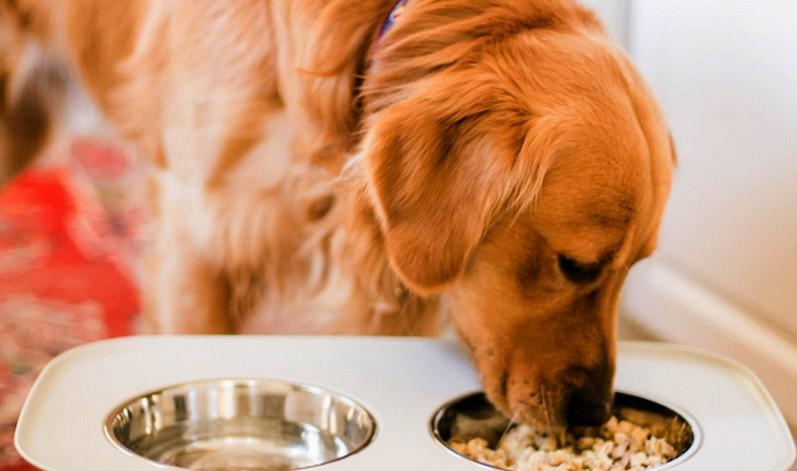 Palatants
Palatants
3+ MIN
18/04/2023
A study analyzes the role of palatability in the pet nutrition industry
The pet food industry is an important sector of the growing pet care market. The industry's growth to date can be attributed to a number of trends that have resulted in a significant increase in the number of new and innovative products available to pet parents. Although pet foods are primarily formulated to provide a complete and balanced nutrition, palatability has been identified as a key factor to determining the success or failure of a product in the marketplace and the chances of repurchase. Therefore, a group of researchers from Massey University carried out a scientific review in which they analyze the methods used to assess the palatability of pet foods, along with a discussion of the palatability drivers . They also study the feeding behavior and nutritional requirements of both dogs and cats, the different pet food formats available, and the ingredients commonly included in pet foods. 'The research on pet food palatability focuses on the amount of food consumed using one-bowl and two-bowl tests, but the differences observed, particularly at the key ingredient level, is poorly understood,' they explain. According to the experts palatability is defined as the physical and chemical properties of the diet, which are linked to the promotion or suppression of eating behavior during the preabsorptive period. 'Instead of being associated with a desire or need, palatability is linked to the perception of pleasure or taste during consumption. In other words, the palatable food is that considered easily accepted by an animal', researches highligted According to them palatability in pet food, especially for cats, remains of great importance to both manufacturers and owners. Currently, traditional palatability testing methods are used to assess the acceptance and preference of complete and balanced pet foods and treats. However, until very recently, few studies have used these traditional methods to assess the palatability of individual dietary components, mainly meat and its derivatives, which are important to the carnivorous cat. 'Cats are known to show differences in the palatability of selected by-products; however, there are gaps of our knowledge in this area and more work is required to determine the main factors responsible for these differences'. For the authors, modern techniques such as metabolomics can unlock this knowledge, but pet food research is still underdeveloped. "In the future, a collective approach using traditional palatability testing methods and modern analytical tests may help determine not only the optimal level of ingredient inclusion to maximize palatability, but also the nutrients responsible for driving preference," they conclude. THE PET NUTRITION INDUSTRY AND ITS COMMITMENT TO PALATABILITY As highlighted in the study, the pet food industry takes palatability into account when developing its products. This is the case of the Canadian company Champion Petfoods, manufacturer of the Orijen and Acana brands, distributed in Spain by Masale. Thus, at Champion Petfoods they regularly carry out palatability tests on their diets, comparing them with their competitors in the same category in order to assess the degree of acceptance by the animals. For instance, in one of the tests, they compared an Acana product to a diet from another brand, and more than half of the dogs were attracted by the known diet due to its scent, and 90% of the time dogs ate its diet first. In another test, Acana diet showed a 9:1 consumption ratio against its alternative. This means for every bowl of food from other brand, 9 bowls of Acana were consumed by the dogs. After performing a statistical analysis of the results collected from the palatability tests, they can conclude their diets outperform other alternatives. "We believe that our high-quality ingredients and high meat content make us leaders," they defend. By Francisco Ramón López
 Trends
Trends
4+ MIN
13/04/2023
Por María Candelaria Carbajo
NIRS, the solution to food quality analysis
The NIRS technique, a possible path toward consistency The NIR technique measures the response of NIR light in a sample of the material and uses this information to determine the composition or other qualities. Thus, it's able to estimate the levels of nutrients in food products. Through mathematical models dedicated to the matrix to be measured, NIR devices are capable of delivering a concentration prediction of, as in this case, raw materials and finished products from the food industry. During the calibration process, prediction models are developed that characterize the relationship between the NIR spectra of a particular material and conditions such as moisture, oil, protein, and fiber, among others. This technology, near-infrared (NIR) spectroscopy, is a precise, non-destructive approach to sample analysis. Traditionally, it was carried out by scientists in the laboratory, but today we find portable devices on the market that bring this technique closer to different application spaces that, once a prediction model has been validated, can be used to obtain results from new material samples in seconds, saving time and money in laboratory analysis. Advantages of NIR spectroscopy Affordable cost Since there are no consumables to buy once you have the device, there are also no costs associated with each measurement. You may only have to pay the annual subscription to the device system. Fast results This system has considerably reduced the time required for analysis. It is no longer necessary to wait for physical or chemical properties to change to obtain a result. We can know a material's composition at any time. Versatile and simple With the possibility of measuring multiple parameters, NIR technology becomes very versatile, being able to offer the most varied information with just one measurement. In addition, the analysis and interpretation of the results can be done easily and with minimal training. With careful instrument design, measurements can be made by non-experts in spectroscopy. NIR analysis and the availability of comprehensive calibrations are particularly useful in helping producers manage the wide variety of ingredients typically used in pet food production. Validated technique NIR spectroscopy has been validated and has long been used as a standard material analysis technique and as a decision-making tool in various industries. No need for chemicals The analysis can be performed without any reagent. There is no need to worry about the risks of hazardous materials when taking a measurement. No sample preparation In most cases, analysis with NIR technology is non-destructive. On the contrary, measurements are made without altering the matter or product. Product quality guaranteed Among the myriad uses of NIR analysis in the pet food plant, one example is fat and moisture control to obtain the correct bulk density and physical stability of final products, which is especially important to ensure that products remain intact when the bag is opened, but still have the proper texture and palatability. For its part, humidity levels are also critical to storage considerations. NIRS in the pet food industry Near-infrared spectroscopy is used in the pet food industry for the rapid evaluation of various macronutrients and gross energy content. It is a fast and accurate method of predicting energy content in commercial extruded dog foods, and it's useful and reliable for the pet food industry when a sufficiently comprehensive calibration set is available. Feed producers often make several products with different recipes for a variety of animal species, and while having a global calibration simplifies the management and maintenance of that calibration, more specific techniques are often required to account for additional variations between products. On the other hand, the applications and the spectra can also change due to sampling differences, instrument aging, different presentations, and years of cultivation. To adapt to the new conditions, the calibrations must be modified, and that procedure should ideally be simple and effective. An example of a portable spectrometer: Neo Spectra by Si-Ware Recently, at Cipal 2022, the event we organized for the meeting and exchange of knowledge of the pet food industry, we learned about the Neo Spectra portable spectrometer, a mobile device that offers accurate and reliable results from anywhere. This, like many other devices on the market, allows easy and accurate measurement of a wide variety of parameters in materials, both homogeneous and heterogeneous. But, in addition, the Neo Spectra proposal allows access, through mobile applications, to prediction models created by experts worldwide uploaded in the same cloud. Some of its features are: Comprehensive coverage Collect samples from one to 10 mm in diameter with a single scan Ergonomic and one-hand use High-memory capacity Towards the real value of NIR technology Near-infrared spectroscopy is the most useful and reliable technology when a large enough calibration set is available. While the use of NIR has long been a standard part of operations, new versatile portable devices are now allowing the value of this technology to be further exploited, making it available to everyone, from anywhere, instantly, quickly, and accurately. Source: All Pet Food Magazine
 Market Information
Market Information
7+ MIN
12/04/2023
Inflation to fuel pet food industry
Consumers continue to treat pets as members of their family, a sentiment that is no longer unusual and only continues to grow. When considering the statement, 'I consider my pets to be part of the family,' a total of 96% of pet parents strongly and somewhat agreed, according to research from February 2023. Diving deeper into this sentiment, 90% either strongly or somewhat agreed with the statement, 'My pets are central to my home life.' Not only are pets considered integral to consumers' families and their homes, but they have also become important to consumers' mental health. According to Sprinkle, the awareness of pets' mental health benefits is climbing higher than those for physical health benefits. Further examining the tie between mental health and pet ownership, in February 2023 research, 67% of Millennials and Gen Z, 70% of Gen X, 68% of Boomers and 62% of Seniors (75 and older), strongly agreed that their pets are important to their mental health. For reference, in January 2022, 66% of Millennials and Gen Z, 65% of Gen X, 62% of Boomers and 58% of Seniors (75 and older), strongly agreed with the statement, highlighting that older pet parents are beginning to see the effect pets have on mental health. As consumers continue to consider their pets part of their family and recognize the mental health benefits of pet ownership, demand for products that support pet health begin to skyrocket. Pet products Overall, pet products have historically witnessed significant growth, however pet food always remains king in the space. Packaged Facts compared the sales of pet food and treat products with pet supplies, detailing that sales from 2021 to 2022 increased 11.9% for pet food/treats and sales for pet supplies increased 9% for the same period. According to Sprinkle, pet food remains the most important product to pet health in 2023. Eighty-four percent of cat owners and 78% of dog owners believe pet food is most important for their pet's overall health. Not too far behind is pet treats, with 44% of cat owners and 43% of dog owners considering treats to be important to pet health. Behind that are non-prescription pet vitamins and supplements, of which 35% of cat owners and 40% of dog owners consider to be important to their pets' health. 'Pet food is first, which is not surprising' Sprinkle shared. '[Consumers also consider the most important pet health products to be] pet treats and supplements. The latter a very hot category along with fresh pet food.' Interestingly, consumers consider pet treats and non-prescription vitamins and supplements to be more important than pet grooming, bathing or first aid products. 'Consumers themselves have an increasingly holistic view of what pet health is,' Sprinkle added. The report also detailed the slight difference for consumers between wellness and pampering. Sixty-eight percent of dog owners and 67% of cat owners purposely look for products to help improve their pets' health and wellness, whereas 53% of dog owners and 55% of cat owners look for products to pamper their companions. Though it's clear that pet nutrition products are extremely valuable to consumers in maintaining their pet's health, their high costs have become the most significant challenges for consumers when it comes to pet ownership. Forty-two percent of dog owners and 44% of cat owners reported high costs of pet food in February 2023. Also, 25% of dog parents and 32% of cat parents shared that they experienced pet food shortages, preventing them from being able to get the products they usually purchase. 'This is the first year that I can remember where high cost of pet food actually trumps high cost of healthcare, and that is because of their recent inflation,' Sprinkle shared. High costs are no longer just impacting pet food, but the entire pet market as a whole, from healthcare and veterinary services to grooming and boarding. 'For decades, the pet market has long been famous for being recession [resistant], not quite recession proof,' he explained. '…The market remains resilient; people aren't getting rid of their pets. But we can see how inflation and other economic concerns are beginning to affect even the more prosperous households that have long and increasingly been responsible for the gains in dollar growth. Premiumization [and humanization] of products and services, not by unit growth or growth in number of businesses,' Sprinkle added. 'Now it's being driven by inflation rather than humanization, which is a different story.' Despite inflation, pet parents continue to purchase various pet products, viewing them as more integral to pet ownership. Among these are pet treats, which have significantly expanded into various types. According to Packaged Facts, the purchasing rates for types of pet treats are all across the board. For example, 40% of both cat parents and dog parents purchase indulgent pet treats, whereas only 7% and 9% purchase rawhide or another form of long-lasting chew. 'Even the most indulgent pampering pet product category is not simply about indulgence,' Sprinkle shared. 'The cat treat market is a little more conservative, but the dog treat market has really been functionalized. Even dog biscuits, the most traditional dog treat, are very much fortified and supplemented and even extended into supplements. You can see how important pet health and wellness is, even in a pampering category like treats.' E-commerce battles brick-and-mortar Brick-and-mortar has long been king in pet product purchasing, but the steady rise in e-commerce continues to gain share in pet product sales. According to Packaged Facts, brick-and-mortar pet product sales share has decreased from 84% in 2017 to 65% in 2022, while e-commerce has increased from 16% in 2017 to 35% in 2022. Alongside the battle between in-store and online, the growth in the pet specialty retail channel remains steady, holding around 34% to 35% of share of pet product sales from 2017 to 2022. Determined to make its mark, the pet specialty channel has combined its specialty know-how with the boom in e-commerce, taking a chunk of online share. Pet specialty e-commerce pet product share has increased to 41% in 2022 from 35% in 2017, whereas all other e-commerce channels have decreased from 65% to 59% during the same period. With both brick-and-mortar and e-commerce representing large opportunities for pet products, Sprinkle highlighted the importance of utilizing an omnichannel strategy, as well as boosting direct-to-consumer delivery. Purchasing trends According to Packaged Facts, consumers are constantly changing their shopping methods, with 34% of Millennials and Gen Z, 21% of Gen X and 14% of Boomers reporting that their shopping patterns changed significantly from 2021 to 2022, likely due to COVID-19 and constantly rising costs. 'Consumers are shopping everywhere,' Sprinkle revealed. 'They're also constantly changing their shopping, and this especially is most recent with the inflationary concerns.' Shopping attitudes and consumer purchasing behaviors also continue to shift throughout pet, as well as all product categories. Remaining loyal to a brand has become less common place, as consumers hone their purchasing efforts on price comparing, online reviews and free shipping offers. According to data from MRI Simmons shared by Sprinkle, the percentage of adults who agree that they read online reviews before buying products online jumped from 59% in 2012 to 81% in 2022. The percentage of adults who agree that free shipping offers attract them to an e-commerce site increased from 62% in 2012 to 81% in 2022. The percentage of adults who compare prices before buying online also increased from 63% in 2012 to 78% in 2022. Remaining loyal to a brand, buying US-made and free shipping offers are more likely to influence older shoppers, Gen X, Boomers and Seniors. Whereas, free shipping offers, reading online reviews before purchasing, and comparing prices online remain strong habits within younger shoppers, Millennials and Gen Z. Not only are there generational differences in consumer purchasing behaviors, but consumers are also committing to cross-shopping at various retailers. For example, of the consumers that purchase pet food products at Petco, 40% also purchase pet foods at PetSmart. Of the consumers that purchase pet food through a veterinarian, 33% also purchase from Chewy; and of the consumers that purchase pet food via Amazon, 42% also purchase from Walmart. To the future Looking to the future of the pet food and product industry, Sprinkle shared two large trends that are expected to impact growth — inflation and attritions in ownership. Coming off COVID-19 shutdowns, consumers continue to face job insecurity and record price hikes that increase in wages have failed to fully offset, according to Sprinkle. Inflation will undoubtedly continue, likely making many consumers rethink their pet food and treat purchasing habits. As many Boomers and Seniors age out of pet ownership, according to Sprinkle, the number of dog-owning households is steadily decreasing, while cat-owning households remain steady and face growth. According to Packaged Facts dog-owning households have decreased from 42% in 2018 to 38% in 2022, whereas cat-owning households have increased 1% during the same period. The market research firm projects that the percent of dog households will hit 40% in 2026 and those with cats will hit 25%. "Cats have long been treated somewhat as second-class citizens in the US market, and that might even be a little bit generous,' Sprinkle said. 'The industry has gotten much better in the last few years, but cat parents are aware. 'I think it is important to keep in mind that the US market in particular has been so dog-centric for so long, but now it's not just about dogs,' he added. '[The cat population] is inching up; the percentage of households that have cats has always been very stable. So [it's important that] cat parents get the products and services they need, and to keep in mind that they're the growth market.' Packaged Facts projects that US pet food/treats sales will achieve $124.77 billion and pet supplies sales are projected to reach $87.96 billion by 2027, overcoming inflationary pressures, changes in consumer purchasing behaviors, adjustments in pet ownership and more. By Nicole Kerwin - Pet Food Processing
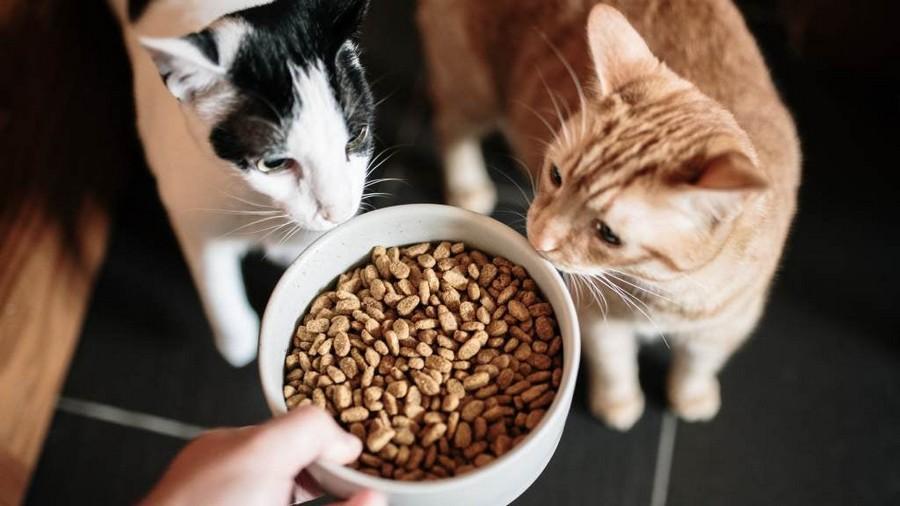 Animal Origin
Animal Origin
2+ MIN
10/04/2023
Byproducts in pet Food - Do they add Extra Nutrients
What is a byproduct Byproducts in pet food are what is left over when a product is produced. For example, in the United States, most consumers only eat the skeletal muscles of the animal. Therefore, organs including the liver, stomach, kidneys, bones, and blood are considered to be byproducts. These body parts are packed with taurine, which is critical for cats. This is why byproducts in pet food are so important, as the skeletal muscle actually contains minimal taurine levels. Amino acids are constituents of proteins, which act as the building blocks within the body of an animal. When a cat is deprived of taurine, they are more likely to experience heart failure as a result of cardiomyopathy or blindness due to retinal degeneration. The organ meats are also packed with protein, vitamins, and minerals, which we don't receive from skeletal muscle. While they might not be consumed frequently in the United States, in other countries, these byproducts are consumed regularly. A great example of this is within Scotland, where haggis, the country's national dish, is created from a sheep's stomach. This is then filled with a sheep's lungs, liver, and heart and then is topped up with spices, onions, and oatmeal Byproducts in Pet Food Examples A common ingredient that's found in pet food is brewer's yeast, which is a result of the beer production process. It is packed with B vitamins, amino acids, and minerals. Another example is vitamin E, which comes as a byproduct of soybean production. Also, other useful byproducts include molasses, wheat germ, whey, and tomato pomace. Human meals do also contain byproducts, which you might already eat. These include gelatine, which is part of the meat production process. Byproducts in pet food offer many great benefits for cats, dogs, and their owners. While you should always keep an eye on what your pet is eating and drinking, never take away anything which offers them a rich source of nutrients each day. Written by bygora
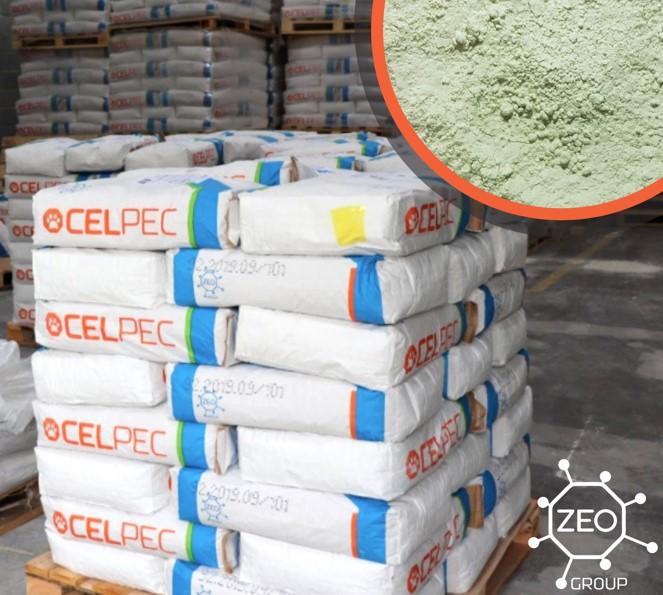 Market Information
Market Information
8+ MIN
07/04/2023
"World Health Day" - Zeolite as a great ally for maintaining the health pets
On its 75th anniversary, WHO proposes a reflection on public health successes that have improved quality of life in recent decades and motivates actions to face the health challenges of today and tomorrow (WHO, 2023). With that same objective in mind, it is interesting that we also look at what has been done for the health of our pets and what we can do to further improve their quality of life and our mutual coexistence. Pets are already members of many families around the world, gaining an important place in family relationships. Today in the United States, the largest pet market in the world, 70% of households have a pet, totaling 90.5 million households (APPA, 2022). With such a close relationship, there is an ever-increasing concern for animal health care, in order to improve their longevity and quality of life. In this sense, nutrition has a lot to contribute by providing nutrients in adequate quantity and quality to maintain a healthy life, in addition to additives that improve the use of these ingredients or improve the health of the gastrointestinal tract. The zeolites are additives already used during many siglos in animal nutrition with several benefits involved in their use. Zeolite is the name given to a group of minerals of the aluminosilicate class (SiO4) whose main characteristic is the negatively charged tetrahedral crystalline conformation, responsible for the adsorption capacity of this material (COOMBS et al, 1997). Its pores allow the entry of cations along its structure, which remain united to the zeolite and, therefore, are not available for the animals to absorb them until another force releases this bond. Due to this high cation exchange capacity, zeolite acts by eliminating several potentially toxic cations from food, preventing serious poisonings from occurring. Given that its crystalline structure is largely responsible for its mode of action, it is important to pay attention to the quality of the zeolite used, since a zeolite that has little crystalline material in its composition will not be as effective. Celpec is a pet food additive composed of 100% natural zeolite that is undergoes to rigorous quality controls before being sold. Zeolites are well known for their ability to adsorb aflatoxins. Aflatoxins are a group of mycotoxins generated by fungi of the genus Apergillus, which cause liver intoxication and are carcinogenic (Leung et al., 2006). Despite being a controlled mycotoxin in many countries, several cases of outbreaks of food poisoning in dogs have been reported, being the most common cause of acute mycotoxin poisoning in these animals (Leung et al., 2006; Boermans, Leung, 2007). The ability to adsorb aflatoxins makes it possible to reduce the intoxication caused in animals that consume them. In vitro studies demonstrate that the inclusion of only 0.5% of Celpec was able to adsorb up to 88% of aflatoxin (Lamic). In a study carried out in vivo with broiler chickens, an improvement in food consumption was observed when comparing animals that consumed feed contaminated with alphatoxins (2.8ppm) to animals that consumed feed contaminated with aflatoxins (2.8ppm) and added 0.5% Celpec (Laboratório Samitec). In the same study, it was also possible to observe that the livers of the animals that received the addition of Celpec in the contaminated feed were less discolored than the livers of the animals that consumed the contaminated feed without any additive, demonstrating the ability to adsorb this mycotoxin and reduce intoxication caused by it. Several studies corroborate the benefit as an aflatoxin adsorbent, with a reduction in the number of severe lesions in the liver of animals treated with clinoptilolite zeolite (Ortatatli and Oguz, 2001) and a decrease in their toxic effect even when the animals are chronically exposed (100ppb) (Orguz et al., 2000). Katsoulos et al. (2016) also observed a reduction of aflatoxin in the milk of cows when they consumed 200g of zeolite per cow per day, reducing the risks associated with the consumption of contaminated milk. As well as being able to adsorb some types of mycotoxins, the high cation exchange capacity also allows zeolites to adsorb other potentially harmful substances that are positively charged, this can include some heavy metals like arsenic, cadmium, and lead. Presence of lead in pet food has been described in Brazil (Zafalon, 2020), Costa Rica (Narando-Jiménez and Wingching-Jones, 2023) and Italy (Serpe et al., 2012) as the only heavy metal present in all the samples tested (whether in small or larger quantities), this statement raises a warning flag regarding the importance of reducing the availability of this element to be absorbed, especially due to its potential for accumulation in important organs responsible for detoxification, as described by Serpe et al. (2012). In this sense, zeolite can be an important ally. Beltcheva et al. (2014) observed a decrease in lead accumulation in the liver, kidneys and bones of rats that consumed natural modified zeolite in feed contaminated with high concentrations of lead. In addition to the ability to adsorb toxins, zeolite has also been reported as an excellent aid in maintaining the health of animals, by acting on intestinal health. Novotný et al. (2019), when studying the effect of Celpec supplementation in piglets, observed that animals that consumed food with 2% Celpec had more consistent stools, with a significant decrease in the severity of diarrhea. Such results can be explained by the effect of decreasing gastrointestinal transit observed in several studies, which would allow greater use of nutrients and greater absorption of water in the tract (Prvulovic et al., 2007). An interesting parallel can be drawn with the findings in studies on dogs and cats consuming Celpec by Maia et al. (2010) and Roque et al. (2009), respectively, where the animals that consumed the additive had an improvement in the fecal score and a decrease in fecal odors. Furthermore, Novotný et al observed that while the control group had degenerative histopathological changes in the duodenum and jejunum, with smaller, disintegrated villi without epithelium, the group that consumed Celpec had comparatively larger villi with intact epithelium, which is also an important reason for the best fecal consistency of these animals. Similar results were observed by Wawrzyniak et al. (2017) in chickens, with an increase in the size of villi in the duodenum and ileum in animals that consumed 2% zeolite in the diet. Wu et al. (2013), also using zeolite in chickens, observed that in addition to the morphological improvement, the use of nautral zeolite decreased the presence of E. coli and increased Lactobacillus in the cecum. Prasai et al. (2016) found this same ability to modulate intestinal bacteria caused by the inclusion of zeolite in chicken feed. These authors reported a significant reduction in the Enterobachiteriaceae family (P=0.013), important and known pathogenic species such as Salmonella, Echericha, Shigella and Enterobacter belong to this family. In dogs, interesting results regarding the decrease in groups of potentially pathogenic bacteria and the increase in groups of beneficial bacteria were described by Sabbioni et al. (2016). This study showed an increase in the phylotypes Lactobacillus ssp. and Bifidobacterium ssp. which are groups widely used as probiotics, while decreased Enterobacteriaceae. In view of the various studies presented here and many others available in the literature, the relevance of using zeolite in the diet of animals is clear, especially pets, in which longevity is highly valued, as well as quality of life, approaching much more of our way of life than many other species. Source: Celta Bibliographic references Amercian Pet Products Association (APPA). Pet Industry Market Size, Trends & Ownership Statistics. 2022. In: https://www.americanpetproducts.org/press_industrytrends.asp. Access: 06/03/2023. BELTCHEVA, M., METCHEVA, R., TOPSHKA-ANCHEVA, M. et al. Zeolites versus lead toxicity. J. Bioequiv. Availab, v. 7, p. 12-29, 2015. http://dx.doi.org/10.4172/jbb.1000209 BOERMANS, Herman J.; LEUNG, Maxwell CK. Mycotoxins and the pet food industry: toxicological evidence and risk assessment. International Journal of Food Microbiology, v. 119, n. 1-2, p. 95-102, 2007. https://doi.org/10.1016/j.ijfoodmicro.2007.07.063 COOMBS, Douglas S., ALBERT, A., ARMBRUSTER, T. et al. Recommended nomenclature for zeolite minerals: report of the subcommittee on zeolites of the International Mineralogical Association, Commission on New Minerals and Mineral Names. Mineralogical Magazine, v. 62, n. 4, p. 533-571, 1998. https://doi.org/10.1180/002646198547800 KATSOULOS, P. D., Karatzia, M.A., Boscos, C. et al. In-field evaluation of clinoptilolite feeding efficacy on the reduction of milk aflatoxin M1 concentration in dairy cattle. Journal of animal science and technology, v. 58, n. 1, p. 1-7, 2016. https://doi.org/10.1186/s40781-016-0106-4 LEUNG, Maxwell CK; DÍAZ-LLANO, Gabriel; SMITH, Trevor K. Mycotoxins in pet food: a review on worldwide prevalence and preventative strategies. Journal of agricultural and food chemistry, v. 54, n. 26, p. 9623-9635, 2006. https://doi.org/10.1021/jf062363+ MAIA, Gustavo Vaz Corrêa et al. Zeólitas e Yucca schidigera em rações para cães: palatabilidade, digestibilidade e redução de odores fecais. Revista Brasileira de Zootecnia, v. 39, p. 2442-2446, 2010. https://doi.org/10.1590/S1516-35982010001100017 NARANJO-JIMÉNEZ, Carolina; WINGCHING-JONES, Rodolfo. Arsenic, cadmium, mercury, and lead in imported pet food in Costa Rica. Agronomía Mesoamericana, v. 34, n. 1, 2023. https://doi.org/10.15517/am.v34i1.48399 NOVOTNÝ, J., REICHEL, P., BÁRDOVÁ, K. et al. The Effects of Clinoptilolite Administration on the Appetite, the Consistency of Faeces and the Histology of the Small Intestine in Growing Pigs. Folia Veterinaria, v. 63, n. 3, p. 47-52, 2019. https://doi.org/10.2478/fv-2019-0026 OGUZ, H.; KURTOGLU, V.; COSKUN, B. Preventive efficacy of clinoptilolite in broilers during chronic aflatoxin (50 and 100 ppb) exposure. Research in Veterinary Science, v. 69, n. 2, p. 197-201, 2000. https://doi.org/10.1053/rvsc.2000.0417 ORTATATLI, M.; OĞUZ, H. Ameliorative effects of dietary clinoptilolite on pathological changes in broiler chickens during aflatoxicosis. Research in Veterinary Science, v. 71, n. 1, p. 59-66, 2001. https://doi.org/10.1053/rvsc.2001.0487 PRASAI, T. P., WALSH, K. B., BHATTARAI, S. P. et al. Zeolite food supplementation reduces abundance of enterobacteria. Microbiological research, v. 195, p. 24-30, 2017. https://doi.org/10.1016/j.micres.2016.11.006 PRVULOVIĆ, D. et al. Effects of a clinoptilolite supplement in pig diets on performance and serum parameters. Czech J Anim Sci, v. 52, n. 6, p. 159-66, 2007. https://doi.org/ 10.17221/2317-CJAS ROQUE, Natália Charleaux. Níveis de zeólita (clinoptilolita) e Yucca schidigera em raçoes de gatos adultos. 2009. Maesters dissertation. Universidade Federal de Lavras. SABBIONI, A., FERRARIO, C., MILANI, C. et al. Modulation of the bifidobacterial communities of the dog microbiota by zeolite. Frontiers in Microbiology, v. 7, p. 1491, 2016. https://doi.org/10.3389/fmicb.2016.01491 SERPE, F. P. et al. Levels of heavy metals in liver and kidney of dogs from urban environment. Open veterinary journal, v. 2, n. 1, p. 15-18, 2012. WAWRZYNIAK, A. et al. Effect of feeding transcarpathian zeolite on gastrointestinal morphology and function in broiler chickens. Brazilian journal of poultry science, v. 19, p. 737-746, 2017. https://doi.org/10.1590/1806-9061-2016-0360. World Health Organization (WHO). 75 years of improving public health. 2023. In: https://www.who.int/campaigns/75-years-of-improving-public-health. Access: 27/03/2023. WU, Q. J. et al. Effects of clinoptilolite and modified clinoptilolite on the growth performance, intestinal microflora, and gut parameters of broilers. Poultry Science, v. 92, n. 3, p. 684-692, 2013. https://doi.org/10.3382/ps.2012-02308 ZAFALON, Rafael Vessecchi Amorim. Determinação de metais pesados em ingredientes e alimentos comerciais para cães e gatos. 2020. Doctor thesis. Universidade de São Paulo.
 Manufacturing Process
Manufacturing Process
3+ MIN
06/04/2023
Successful control system modernization
The most obvious illustration of this is systems that have obsolete electrical components and legacy software that is no longer actively supported by original manufactures. As we move into Industry 4.0, the old standard of each individual machine having an isolated 'island' of automation is being replaced by more integrated automation systems that communicate to each machine, sharing and creating significantly more data than even 15 years ago. With this added data is the desire to connect the plant floor data to business systems. More and more facilities want production orders to come down from ERP systems to process controls, producing real-time consumption data that is utilized to reduce inventory. To stay competitive, many facilities have made the business decision to modernize their legacy machine and controls systems. Typically, this can be done at a fraction of the cost and time of a greenfield project. Modernizing a control system A control system upgrade can bridge all these gaps by integrating mechanically sound process systems with a modern automation system. At a minimum these projects consist of substantial replacement of obsolete components, sometimes even retaining the original PLC logic. These projects can also be expanded to include high level integration of different machines, adding new machines to an existing system, ERP integration, and ground-up re-writes of logic and operator screens. Modernization projects are known to be complex, especially because engineers are required to work inside an existing framework as opposed to building a system from the ground up. There may be missing documentation or drawings. Additionally, some field modifications may not be included in the drawings. Minimizing production downtime is a significant concern, so the implementation window to get the system back in production is often small. A successful modernization project considers these factors and others during the initial phases of the control system upgrade. Key to any project is developing a deep understanding of the existing system. This is paramount to implementing the upgrade without breaking what is currently in place. Best practices As a Senior Project Manager at NorthWind, I have implemented many modernization projects throughout my career. In this time, I have found a few tried and true practices that lead to a successful control system upgrade. Customer/Project Management Planning When modernizing any system, a collaboration between customer and Project Management is a must. Through this collaborative approach, a forward-looking plan is made to include functionality, risk avoidance, down time reduction, migration solutions, project phasing, etc. to ensure the project scope is clearly outlined and understood. Design Trip There is a misconception that modernization will 'break' the current system and lead to significant downtime. Conducting an initial design trip is instrumental for designing a project that takes into consideration the existing system and its functionality and designing a system that will meet the customers scope and needs. Before any modernization takes place a review of pre-existing equipment, electrical, design and functionality is conducted. Any existing drawings and documentation are also thoroughly reviewed. In the event there are no drawings of the existing system, a new set will be created. Safety Considerations There are misconceptions involving safety considerations: Many people think that safety guidelines are grandfathered in by the date of the original mechanical equipment installation. However, on any substantial electrical modernization project, safety circuits and functionality need to be reevaluated. Electrical Installation One of the biggest concerns with control system modernization is the amount of time it will take for installation and requalification. Working with an industrial electrician with the expertise to understand how to work within schedule constraints and provide creative, custom solutions to meet outage windows is critical. Installation can be done in phases, during production downtimes, or any other number of solutions to keep downtime at a minimum. Benefits of modernization Updating hardware and software with better automation control systems can improve plant performance, increase productivity, improve communication between the process information and business systems, provide useful production data, provide alerts to improve response times, increase plant system security and perform system diagnostics. With NorthWind you can achieve an effective modernization project that manages safety, health and environmental risks, get documentation for field devices in the system, and be assured of a more efficient, consistent and optimized operation, with the support of the system for years to come. Contact us today to talk about your system. By: Blake Bennett – Automatización Source: Northwind Technical Services
 Formulation
Formulation
7+ MIN
06/04/2023
Diversified Diets
Pet owners are incorporating more freeze-dried, air-dried and gently cooked options into their dogs' diets, thanks in part to the perception that these foods feature high-quality ingredients that offer multiple health benefits. Freeze-dried, air-dried and gently cooked diets were once viewed as meal toppers for dogs to enjoy as an occasional treat. However, today's pet owners are choosing to use these products regularly as an enhancement to their dogs' daily meals, said Molly Keveney, spokesperson for Champion Petfoods, the Edmonton, Alberta, Canada-based manufacturer of the Acana and Orijen brands. "Deterring flavor fatigue or mitigating potential dietary sensitivities are some of the reasons consumers continue to diversify their pet's food," she said. "Rotating dry food recipes alone is not cutting it, so pet lovers are looking for new ways to create crave-able meals that are more enticing and exciting for pets." Freeze-dried foods are great options for pet owners who want the benefit of frozen raw nutrition, Keveney noted. The freeze-drying process maintains the nutritional value of fresh ingredients by locking in flavor and nutrients, creating biologically appropriate nutrition for dogs and offering peace of mind for owners that want to amplify their pet's everyday meals, she added. "Our freeze-dried diets are made with 90 percent quality animal ingredients and are available in a variety of recipes," Keveney said. "Acana Freeze-Dried Food comes in two different sizes, patties or morsels, and features a savory bone broth for an added boost of flavor and protein." FOCUSED ON NUTRITION The humanization of pet food has been driving the market for alternative food formats such as freeze-dried, air-dried and gently cooked the past few years, according to industry insiders. "The alternative food category is one of the fastest growing in the pet space," said Dan Markenson, head of retail at Dr. Marty Pets, a Los Angeles-based pet food manufacturer that recently introduced a 48-ounce bag for all its recipes. "Pet parents are looking for ways to nutritionally build up their pet's food bowl by feeding whole foods and adding superfoods and extra nutrients where they can. A focus on whole real food that is bioavailable to the pet is what pet parents are looking for." Jason Ast, co-owner of Just Dog People, a pet store in Garner, N.C., has seen similar trends. "These food types are a great way to begin feeding dogs a more biologically appropriate diet," Ast said. "Freeze-dried foods have been popular at Just Dog People for several years now, and many people use these options as toppers and training treats." Innovation in this category has a broader focus on specific, health-targeted ingredients, especially those aimed at digestive health or joint health, according to insiders. Pet owners are looking to build a diet for their pets that drives optimum health and wellness, said Kelly Walters, brand leader of pet foods at Redbarn Pet Products, a pet food and treats manufacturer in Long Beach, Calif. "Consumers looking for better ingredients led to a premiumization of the category," Walters said. "They are also looking for ingredients to be less processed, which is driving the growth in the alternative categories. Air-dried, freeze-dried and gently cooked are all processed in ways that better maintain nutrients in the raw ingredients, as compared to a typical dog food kibble." Redbarn Pet Products released several trial-size options for its air-dried lines in December 2022 and will launch largesize options soon. "The trial sample sizes were driven by consumers who are looking for an opportunity to try out the product prior to making a more significant investment," Walters said. "Many pet parents have been interested in checking out the category, but prices have kept them from diving in. Once people try the product, they are hooked and are ready to make a commitment to feeding more regularly, whether as a full feed, topper or training incentive." Tyler Maneth, vice president of marketing at Ziwi USA, an Overland Park, Kan.-based pet food and treat manufacturer, said consumers are also looking for diets that offer variety, including textures, price points and ingredients "As pet parents continue to educate [themselves] and desire to provide their pets with better nutrition, manufacturers push to provide foods that meet and exceed their expectations for optimal health," Maneth said. "This also coincides with the quality of the ingredients and sourcing, with a strong focal point on ethical and sustainable practices being integral to the products." Ziwi recently made improvements to its air-dried line, which included increasing organ meat inclusions. Amy Snell, national sales manager for Northwest Naturals, a manufacturer in Portland, Ore., said the freeze-dried category has grown in popularity because it is so versatile. "Pet parents can use freeze-dried recipes as a complete and balanced treat," Snell said. "These diet options are great for training and as a topper due to the meat smell and palatability, and are perfect for traveling." With the awareness and growth of frozen raw, freezedried foods have become a great option for those who are uncomfortable handling raw. Pets still get the same nutritional benefits from diets in this category, but without the pet owner having to handle wet raw meat, insiders report. "Consumer awareness has increased, and pet parents want more wholesome and rewarding choices for their pets," said Christie Dilling, assistant manager and clinical pet nutritionist for We Lov Pets, which has four locations in Ohio. "They now know what is important in a dog's diet but still need convenience due to busy lifestyles. This makes air-dried, freeze-dried and gently cooked foods an extremely appealing choice." More shoppers understand the benefits of providing a more nutrient-dense diet for their pets, and air-dried and freeze-dried options help pet owners to do that in a more economical way than feeding a completely raw or homecooked diet, said Heather Blum, co-owner of Petagogy, which has three stores in Pittsburgh. "For many customers, these diets represent an entirely new way to feed their pets," Blum said. "Introducing them slowly as a way to boost an existing kibble diet has been an accessible way for many pet owners. Air-dried and freeze-dried diets especially can be used as toppers and are great for pets that are growing tired of basic kibble and need a boost to their bowls." CONSUMER EDUCATION Many retailers do a good job educating consumers about the best nutrition for their dogs, Keveney said. "It is a brand's responsibility to arm retailers with the information and resources needed to encourage more diverse feeding practices," Keveney said. "The nutritional benefits, production process and overall convenience factors are important qualities for retailers to highlight to help increase awareness around this pet food category." Retailers should inform customers about different manufacturing processes that are used to maintain more of the nutrients in the raw ingredients, and help them understand the benefits, Walters noted. "Shopping this alternative feeding space can be daunting for pet owners, between the different options and the higher price points," Walters said. "Retailers should continue to focus on the ingredients in the foods that manufacturers bring to them and splitting apart the marketing messages from the food those messages represent." Ziwi has an online training module available to its retail partners and their associates to help educate customers about its brand and products, Maneth said. "Taking advantage of the resources and training made available by brands is an absolute must," Maneth said. "Within the store, having a dedicated space for this category is extremely helpful so a store associate can easily walk and educate customers through the different options." More pet owners are discovering the power of raw foods for their pets. "Communication in the aisle is a great way to let pet parents understand the value of raw," Markenson said. "The scale of this category is at the point where pet stores can have alternative feeding sections that are differentiated from the kibble section and offer educational information on the power of raw food. In-store demos and sampling programs can help educate as well as demonstrate the palatability of many of these recipes." When retailers explain the biological nutritional needs of dogs, consumers are more inclined to try these diets."Once pet parents understand how convenient these diets can be, they can't wait to buy more," Dilling said. "For most of our customers feeding completely in these categories of food is just too expensive. When we explain that there are huge benefits for even using it as supplemental feeding, many pet parents are much more open to the idea of adding these nutritionally packed diets." Availability and acceptance helped these foods expand, and people are willing to try alternatives to kibble, Ast said. "The more you talk to your customers, the more you'll find that they are looking for alternatives to their dog's current diet," Ast said. "It is surprising how many people are receptive to feeding a non-kibble diet." Snell said starting with small steps can be valuable. "In the freeze-dried category, a little raw is better than no raw," Snell said. "Recommend the customer start with a treat or a topper. Starting small is a great way for pet parents to add nutrition to their dogs' current diets." BY ALEXIS MATTSON THIS ARTICLE IS BROUGHT TO YOU IN PART BY CHAMPION PETFOODS
 Vegetable Origin
Vegetable Origin
3+ MIN
04/04/2023
U of I study gives a thumbs up to carefully formulated vegan diets for dogs
New University of Illinois research shows at least two human-grade, lightly cooked vegan diets provide adequate nutrition for dogs. 'The trends of vegan foods and human grade foods are increasing for dogs. Because people are feeding these diets to their pets, it's important they be tested like all other foods to make sure they're safe and 'complete and balanced,'' says study co-author Kelly Swanson, professor in the Department of Animal Sciences, part of the College of Agricultural, Consumer and Environmental Sciences at U of I. Swanson's team tested two human-grade vegan formulas (with and without a grain ingredient) from Bramble against a leading brand chicken-based kibble diet. They fed the diets to beagles for three weeks and sampled the dogs' blood chemistry, fecal quality, and microbiome, the collection of microbes present in the poop. Their results are published in the Journal of Animal Science. The team also analyzed the foods themselves – the vegan diets were veterinary nutritionist-formulated mixtures of whole foods like lentils, garbanzo beans, sweet potatoes, butternut squash, apples, blueberries, peas, and carrots – and confirmed both vegan diets and the chicken-based diet met standards set by the Association of American Feed Control Officials (AAFCO) for 'complete and balanced' nutrition. 'One thing to remember is that animals don't have ingredient requirements, they have nutrient requirements. As long as they're consuming the essential nutrients in the correct amounts and ratios, dogs can be vegan, vegetarian, or meat-eaters,' Swanson says. 'Knowledge of ingredient composition and nutrient needs are critical, however. Anyone can slap together a vegan meal for their dog, but without careful formulation, you might have something that's really imbalanced.' In earlier studies, Swanson's group showed human-grade, fresh dog foods to be highly digestible, resulting in dramatically less stool. That wasn't exactly the case for the vegan diets in the current study. All diets were highly digestible, but the vegan diets didn't generate any more or less stool than the chicken diet. 'It's not a surprise, really. With these ingredients, there's more fiber and oligosaccharides, which could be good for dogs that need to stay regular,' Swanson notes. The research team was surprised to find certain blood metabolites – chemicals in the blood that can indicate health status – differed between the vegan diets and the chicken-based diet. Notably, blood triglycerides and cholesterol, measures of circulating fats, were significantly lower in dogs fed the vegan diets. Swanson says that could benefit obese pets and help maintain a healthy weight. When they analyzed the fecal microbiome and the chemicals produced by those microbes, the team noted more positive changes. 'There were some interesting and beneficial changes in the microbial community that I think reflect the blend of fibers that were present in the vegan diets. The fecal metabolites phenol and indole, both of which contribute to fecal odor, were dramatically decreased in those diets too. It's still going to smell, but probably less,' Swanson says. 'Overall, it looked like there were some beneficial shifts from a gut health perspective in dogs fed the vegan diets.' Swanson says he'd like to do head-to-head comparisons between human-grade diets with and without meat and dairy products, but for the first study showing how fresh vegan diets perform in dogs, the results are promising. 'No one had tested digestibility of these diets in dogs before this. We showed that these vegan diets resulted in desirable fecal characteristics, high nutrient digestibilities, and positive changes to certain blood and fecal metabolites,' he says. 'For people who are interested in feeding their pets a vegan diet that aligns with their personal values, the diets we tested are a good choice.' Swanson reiterates the diets were formulated by veterinary nutritionists, and that homemade vegan dog foods may not provide complete and balanced nutrition for dogs. The article, 'Apparent total tract macronutrient digestibility of mildly-cooked human-grade vegan dog foods and their effects on the blood metabolites and fecal characteristics, microbiota, and metabolites of adult dogs consuming them,' is published in the Journal of Animal Science [DOI: 10.1093/jas/skad093]. Additional authors, also from the Department of Animal Sciences and the Division of Nutritional Sciences in the College of ACES, include Leah Roberts and Patricia Oba. Bramble, Inc. funded the study. by Kelly Swanson
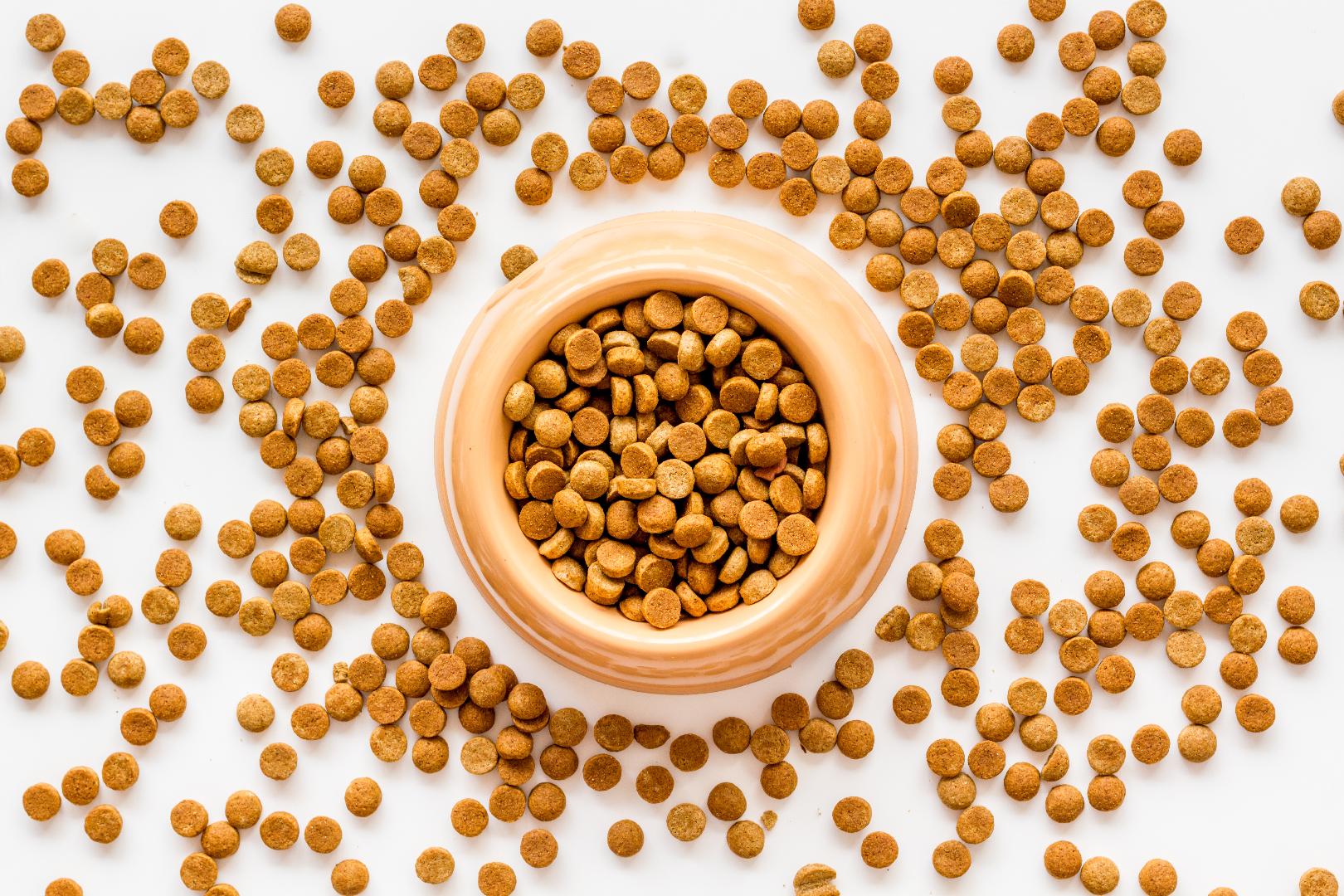 Manufacturing Process
Manufacturing Process
4+ MIN
30/03/2023
Troubleshooting a Flushing Feeder
Low Angle of Repose To start our investigation, we look at the material itself. Is it aeratable and, once aerated, does it fluidize like a liquid? We can evaluate this by measuring the material's angle of repose. Picture a pile of material sitting on a flat surface. The angle of repose is the angle between the flat surface and one side of the pile. Higher angles of repose happen when a material is cohesive and sticks to itself. Lower angles of repose mean the material is more free-flowing and could potentially be floodable. Low-angle-of-repose materials are more prone to flushing out of a feeder than those with higher angles of repose. Refill Set Points The next place to look? Refill setpoints. When the feeder calls for a refill, the incoming material aerates the material inside of the feeder. This can fluidize this material and flush it out of the feeder. When that happens, the entire line must be paused so the feeder can be properly refilled again. The solution? Raise the set point until there is a nice heel or head of material over the feed screw. This will protect the rest of the material inside the feeder from the charge coming in. Because it is protected, the material inside of the feeder doesn't fluidize. In other words, you can prevent flushing of a low angle-of-repose, floodable material with more frequent, smaller refills. Material Voids We have looked at issues affecting low-angle-of-repose materials. However, even high-angle-of-repose materials sometimes flood out of a feeder. Two scenarios contribute to this: Ratholing Material bridges Figure 1: Ratholing example There is also the material bridge scenario. Like a rathole, a material bridge involves a small void. In this case, the void occurs in the shape of a small bridge over the feed screw. When this bridge collapses, the material can flush out of the feeder. In either of these scenarios, a feeder with internal agitation may be needed to keep material from ratholing or bridging. Figure 2: Internal feeder agitation The next place to look is with the refill system itself: gravity, pneumatic, or vacuum. Gravity System In a typical gravity system of a bin with a refill valve at the bottom, a long drop to the feeder can cause the material inside the feeder to aerate and flush out. There are two ways to address this: Move the refill valve (butterfly valve or slide-gate valve) closer to the feeder so the material does not have as far to fall. This is the best option, but may not always be possible. Install a baffle inside the feeder's extension hopper. The baffle can be a piece of angle iron pointed up toward the inlet of the feeder's extension hopper. Or it can be a conical piece of material supported inside the feeder. These will baffle the impact of the material coming into the feeder. However, installing baffles can be tricky—material may hang up on them, and the hopper could eventually become blocked. Pneumatic and Vacuum Systems In a pneumatic or vacuum-type system, material that has been aerated before entering the feeder can also cause flushing. The solution is to give the material enough time to de-aerate after being picked up and conveyed. A larger refill bin above the feeder will allow the material to de-aerate before it is introduced into the feeder. Figure 3: Refill bin above a feeder Is the material only flushing with the first refill? Filling a feeder with a floodable material for the first time can cause the material to flood out of the feeder. Three ways to prevent flooding in this situation are: Incorporating a center rod inside the feed screw to take up the void in the feed screw spiral or helix. Using a side discharge, which gives the material a wall or end cap to overcome before it is fed out. Using a discharge plunger to stop the discharge of the feeder during the initial refill, then opening the discharge of the feeder the rest of the time. This is ideal for extremely floodable materials. Figure 4: Helix with center rod Clogged Filtration System Another place we need to look at is the filtration system of the feeder. If the feeder has a blinded-up dust sock, the air inside the feeder cannot move out as new material comes in. Air will always take the path of least resistance, so if one exit is plugged (dust sock), the air will find its way out through the discharge point of the feeder—and it will bring the material with it. Downstream Effects Finally, what is downstream of the feeder? Are we feeding into a pressurized or vacuum-type system below the feeder? The vacuum may be strong enough to pull the material out of the feeder before the feeder has a chance to weigh it. If this is the case, investigate isolating the feeder from the downstream vacuum with a vented rotary airlock or a smaller screw conveyor. Reach Out for Help Hopefully, these scenarios have given you some ideas of what to look at if you experience a flushing or flooding feeder. Feel free to give an applications engineer a call to help troubleshoot your system or, better yet, have a technician come out. This small investment can prevent significant losses of revenue from downtime and product waste. By: Todd D. Messmer - Weighing and Feeding Product Manager Source: Schenck Process
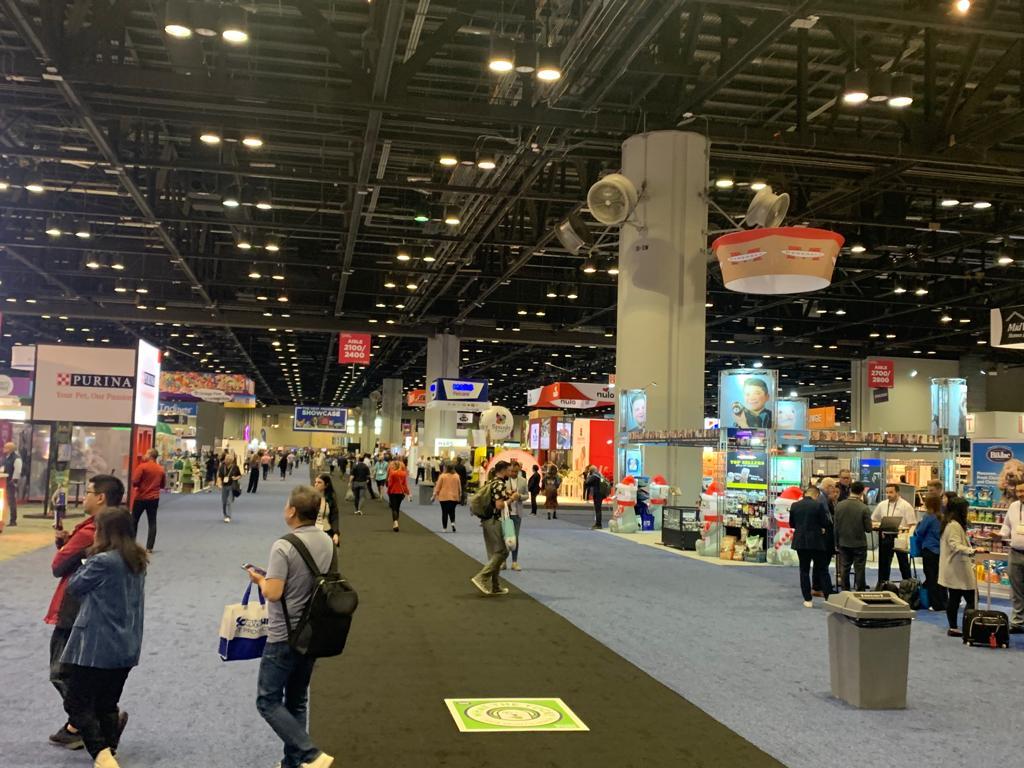 Events
Events
1+ MIN
29/03/2023
A new edition of The Global Pet Expo was held
Under the slogan 'Everything you need', last March 24, the Global Pet Expo ended and we were there enjoying an event that exceeded its expectations about attendees number. This event had a wide participation of Pet Care and Pet Food companies. We walked around the show room with more than 1,000 exhibitors and took the opportunity of visiting colleagues and friends, attending some of the conferences to learn about the latest industry trends. As in every event, we meet again with the All Pet Food Magazine readers, and give them the latest issue full of technical-scientific content. The networking space generated in these kind of meetings, let us give to the audience all the information regarding CIPEU Congress 2023. There is still a great year ahead to attend the most important events to our community. It was great of being part to tell the audience about the day by day of this pleasant experience! We will be looking forward to the the next Global Pet Expo edition! By: All Pet Food
 Market Information
Market Information
1+ MIN
28/03/2023
Pet food market trends in APAC, insights from pet fairs
These tradeshows gave visitors from more than 60 countries the opportunity to discover how trends in humanization, nutrition and health, as well as the emergence of innovative processes and new ingredients, are shaping the pet food market in APAC. Get into the Symrise Pet Food's BLOG Appetizer and find out the most relevant products from the Asian pet food market launched in 2022. Source: Symrise Pet Food
 Packaging
Packaging
2+ MIN
23/03/2023
STATEC BINDER GmbH: High-performance products for high-standard customers
With its flexible and customer-oriented packaging technology, the Austrian company is represented on the international market, placing itself among the leading suppliers of high-performance open-mouth bagging machines. The wide-ranging product portfolio offers customized solutions of the highest quality for products used in a variety of industries. The PRINCIPAC, CERTOPAC, ACROPAC, and CIRCUPAC open-mouth bagging systems are designed for polyethylene (PE), woven polypropylene (PP), and paper bags with a filling weight of 5 kg to 50 kg. The high-performance segment is complemented by the SYSTEM-T FFS (Form-Fill-Seal) machine for bag processing from tubular film and the SYSTEM-F vertical FFS machine for bag processing from the flat film. The broad product range of STATEC BINDER is rounded off by robotic, high-level, and portal palletizing systems. The PRINCIPAL-H, PRINCIPAL-R, and PRINCIPAL-P palletizers are characterized by their high efficiency and adaptability. High-performance net weighers and bag closing systems ensure precise weighing and dosing, as well as a secure closure of bags. Meeting customer needs globally Starting from the food sector to the petrochemical industry – with over 1,700 machines installed worldwide, STATEC BINDER looks back on numerous positive references. The company counts small firms as well as large corporations, represented on all five continents, among its existing customer base. Thanks to proven technology as well as continuous developments and optimizations, STATEC BINDER serves as an internationally recognized partner to many. After 40 years of experience, the company stands for absolute reliability, characterized by precision and constant innovation. Customer service as a success factor Customers all over the world put their trust in STATEC BINDER every day. Expert consulting services, a high level of service competence, and support for any concern provide reasons for this. Customer service is characterized by highly trained employees and online service with real-time support. The fullest satisfaction of the customers has the highest priority. STATEC BINDER stands for… High-performance bagging and palletizing of bulk goods Machines and systems of the highest quality Flexible and customer-oriented solutions Absolute reliability, innovation, and precision Global customer service More than 40 years of experience Over 1,700 machines installed worldwide Further information can be found on STATEC BINDER WEBSITE Source: Statec Binder
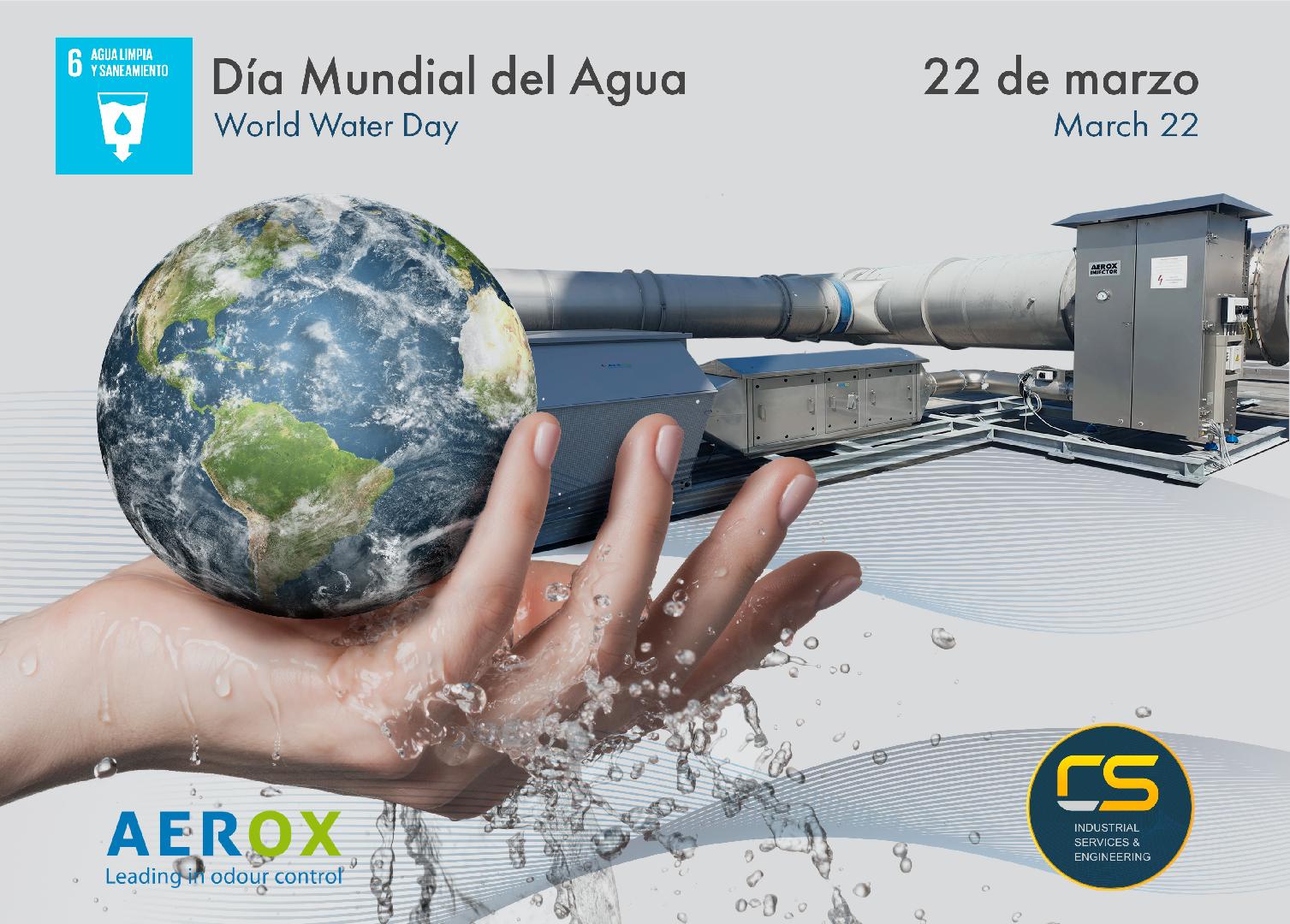 Trends
Trends
3+ MIN
22/03/2023
World Water Day
This day is celebrated under the motto 'Groundwater: Making the invisible resource visible', by the UNESCO, the leader agency of the ONU. In 2015, the world committed to 6. ° Sustainable Development Goal (SDG) as part of the 2030 Agenda: the promise that everyone would have safely managed water and sanitation. This year the celebration of this world day coincides with the start of the ONU Water Conference 2023 (March 22-24, New York). This will be a unique opportunity to seek solutions to the current crisis. Billions of people and countless schools, businesses, health centres, farms and factories are restricted because their human rights to access water and sanitation have not yet been fulfilled. Today, we are very far from achieving it. For this reason, from the pet food industry we understand the seriousness of the problem and we assume the responsibility of taking care of this non-renewable natural good, as a form of constant valuation of a resource that allows us to produce food, improve the quality of life of pets and thus see a booming industry grow. We are aware that we have at our fingertips a resource that even today is not available to the entire world population. And we are also convinced that there are rapid and transformative measures, among which the individual action of each one of us can be included. That is why today, we tell you about the interesting Non-Thermal Plasma Technology - NTP of the Aerox Injector, which contributes to the care of two resources: air and water. Currently, the emission of odours into the atmosphere by industrial processes is also worrisome and is being increasingly regulated by government authorities and entities that work to minimize the impact of pollution on our planet. The Aerox Injector system is recognized worldwide as "The Best Available Technology" for the control of odours that are generated during the pet food manufacturing process, without the use of water. Among its main advantages and unlike other technologies, the non-use of water for its operation stands out. Therefore, in addition to not causing odour pollution, and the consumption of a non-renewable resource such as water, it does not generate the disposal (discharge) of contaminated liquid effluents into the environment, so it is not necessary to treat a secondary polluting effluent. How is the system working? The Aerox Injector is a non-thermal plasma unit located outside the process air exhaust duct that draws in ambient air with a fan, passing it through a three-stage filter and a small heater to discard the air of particles. After the purification process, this air passes through the NTP modules, where free oxygen radicals are generated using a minimum of electricity. These radicals are then injected into the exhaust air duct of the process, reacting with the components that cause the odour, oxidizing them and transforming them into odourless and harmless components to the neighbours and the environment. The reaction occurs instantly in less than 1 second. Image 1 Additionally, we could mention that it achieves odour reduction levels of up to 95%, and it has a compact size making it very adaptable to installations. In addition, if possible, we can treat the combined process air outlet ducts with a single Aerox Injector (see image 1). In this way, today we can confirm that the technology and solutions applied to the pet food industry pursue the constant challenge of minimizing the impact on their production processes. You are invited to visit CLIVIO SOLUTIONS and AEROX websites. Source: Clivio Solutions
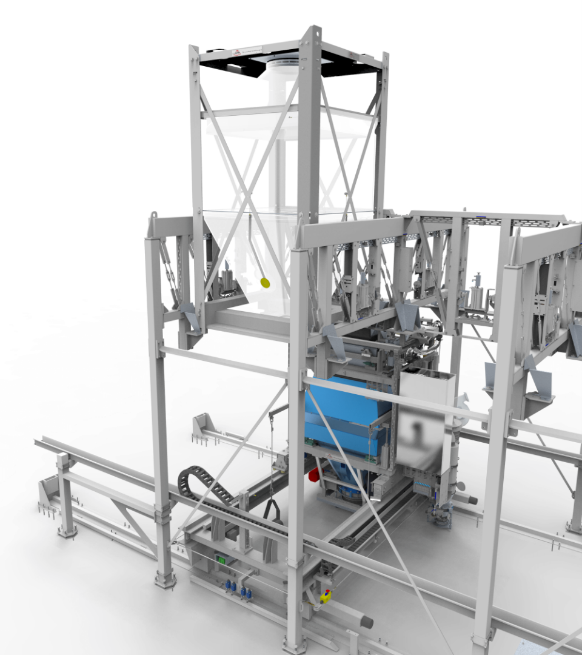 Dosing
Dosing
2+ MIN
17/03/2023
KSE ALFRA Equipments: The perfect fit for every plant
A high precision dosing and weighing system is crucial to produce quality products. KSE's ALFRA equipment has over 90 years of experience in food and related industries, ensuring optimum production flexibility in your plant while maintaining high consistency of quality and safety.
These equipments incorporate solutions to dose both macro and micro components for ingredients with different densities and flow characteristics.
Raw material dosing: Precise component measurements
The quality of animal feed essentially depends on the precision of dosage and weighing of the components of the formulation. ALFRA equipment is designed to measure each component with maximum precision.
Micro-component dosing: The most precise measurement of the smallest components
With ALFRA equipment, the smallest amounts of components are measured with extreme precision to ensure that micro-dosing and weighing are no longer the bottleneck in the factory. Automating the micro-dispensing process eliminates the time-consuming (and error-prone) task of manual dispensing, ultimately improving quality consistency, process control, and health and safety performance.
We invite you to learn about ALFRA equipment for micro-dosing:
ALFRA BDS: The ALFRA Box Dosing System is a modular and scaleable platform that is designed to completely automate the preparation of micro ingredients for animal feed production in boxes.
ALFRA FCCDxy: The FCCD safely doses rarely used ingredients that can spoil if they remain in the silo for too long. It uses unique exchangeable containers with dosing slides, giving efficient and contamination-free dosing of even small quantities of materials. Ingredients from up to 24 containers can be combined automatically.
ALFRA FCDxy: Combining high throughput with outstanding accuracy, the ALFRA FCDxy features our unique dosing slide, which ensures that dosing and weighing is no longer a factory bottleneck. Uniquely, it eliminates labor-intensive and error-prone hand dosing – and the alternative of a separate machine for small amounts – by handling from 50 gram right up to 100 kg in a single machine.
ALFRA KCD: is designed for dosing and weighing dry powders, granulates and pellets. The dosing and weighing system combines high throughput with excellent accuracy.
KSE was founded in 1973 as a small electrical installation company in the agricultural sector.
Over the years, it has specialized in dosing and weighing systems and intelligent automation software for the feed industry. They focus on continuous innovation, passed down from generation to generation. This sector is its core market. Personal contact, excellent service and a passion for the powder and granules processing sector are the keys that have allowed them to grow from being a small company to an international company with activities all over the world.
LEARN MORE about their equipment, services and solutions.
By: All Pet Food
 Packaging
Packaging
1+ MIN
16/03/2023
Introducing Statec Binder worldwide
For more than 20 years, Eximconsult has supported and advised clients in Latin America, finding the most appropriate solution for each client. They also provide post-sale support and hope to become a strategic partner. Therefore, we would like to introduce you to Mariano Weller, our representative for Latin America. Mariano has worked for 7 years at EXIMCONSULT, representative of STATEC BINDER for Latin America, and he tells us about this cooperation About Statec Binder STATEC BINDER looks back on a long tradition. For more than 40 years, the company, which is based in Gleisdorf (Austria) near Graz, has been successfully applying its experience in packaging technology worldwide. Thanks to constant further development and optimization of proven technologies, STATEC BINDER has taken the lead with new, innovative packaging concepts and is thus considered one of the leading suppliers of high-performance open-mouth bagging machines. The name STATEC BINDER stands for absolute reliability coupled with precision. www.statecbinder.com https://www.statec-binder.com/en/ About EXIMCONSULT We are a group of professionals present in Latin America with more than 20 years of experience in bagging in open-mouth bags, FFS, palletizing, strapping, cold hooding (stretch hooding) and (thermoshrinking) endorsed by renowned leading companies in the whole LATAM region. We are present with our clients from the most varied industries such as fertilizers, petrochemicals, sugar, ceramics, glass, household appliances, paper, animal feed and many others to help them find the best solution for their end-of-line packaging needs.www.exim-consult.com by All Pet Food
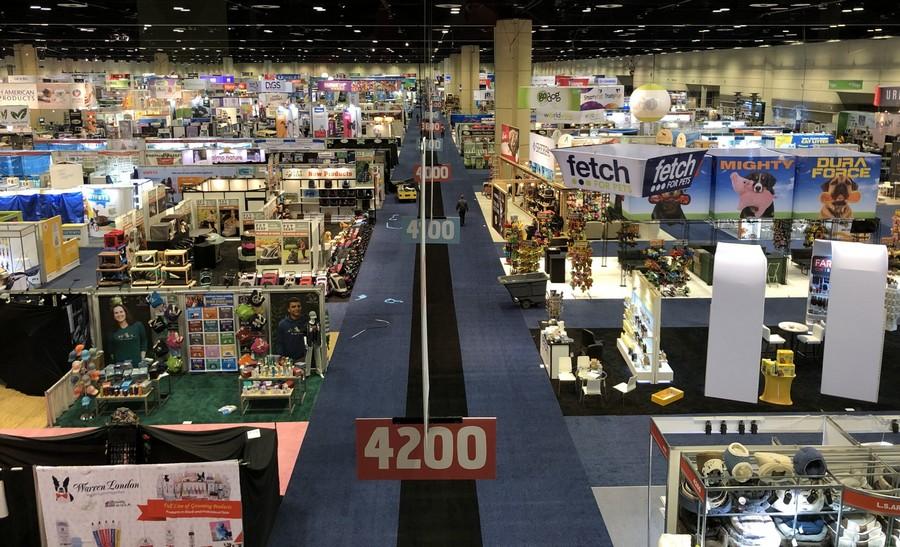 Market Information
Market Information
4+ MIN
14/03/2023
Global Pet Expo Gear Ups for its highly anticipated 2023 Event
Taking place March 22-24 in the South Concourse of the Orange County Convention Center (Orlando, Florida), the premier international gathering for the pet products industry is gearing up for this year's show with new offerings, investments and innovations. 'Global Pet Expo 2023 is shaping up to be a 'can't miss' event,' said APPA Executive Vice President of Operations Bob Merar. 'It is exciting and rewarding to see how the show continues expanding to meet exhibitor, buyer and other attendee demands and expectations. I can confidently say this year's event, aptly themed 'Everything You Need,' will provide those in attendance with everything they need to succeed in our industry now and in the future.' This year, attendees across all categories can expect new, unique experiences and offerings to elevate and enhance their 2023 show experience. Exhibitors New year this, Global Pet Expo has launched an Exhibitor Success & ROI Center. The program provides proven-effective expert guidance and resources to help exhibitors achieve their business objectives and deliver measurable, financial value. First- and second-time Global Pet Expo exhibitors also have direct access to information and presentations provided by the nation's leading agency that specializes in optimizing exhibitor success, from trade show planning and productivity tools, to budgeting, tips on measuring ROI and more. 'Our goal is to make smart investments that have a direct and lasting impact on our members' businesses and shape their success,' said APPA Vice President of Trade Show Management Kate Stewart. 'We are confident this program will help our exhibitors achieve an ROI that is unmatched in the industry.' Exhibitors debuting a new product at Global Pet Expo 2023 can enter the New Products Showcase, featuring hundreds of the latest products and designs hitting the market this year and a chance to be named 'Best in Show.' Buyers vote for the best new products across nine categories. Winners are announced at the 'Best in Show' Awards ceremony, garnering attention from attendees and media across nine product categories for additional product visibility and recognition. This year, the Global Pet Expo team also debuted a new influencer program to increase show attendance from qualified pet industry influencers. This new program aims to build Global Pet Expo's influencer network while helping exhibitors establish and build relationships with influencers to help reach their target audiences. Buyers Global Pet Expo 2023 is well positioned to help buyers find the right products to meet the needs of their customers. In fact, 91% of buyers who attend the show recommend it to other product buyers. From the New Products Showcase with hundreds of debut products to specialty areas of the show floor, show-only specials, and more, there are ample opportunities for buyers to maximize their merchandising and grow profits. New for 2023, Global Pet Expo is hosting a First Time Buyer Orientation on Wednesday morning to share tips and best practices on optimizing time on the show floor and identify "can't miss" opportunities to maximize the buyer experience at Global Pet Expo. In addition, buyers can connect with other buyers – whether new or returning – in the Buyers Lounge, conveniently located in the middle of the busy show floor. Global Learning Series Free for all registered Global Pet Expo attendees, the Global Learning Series delivers over 40 hours of educational content developed for retailers, distributors, exhibitors and special interest groups in the pet care community. From classroom settings to quick, 15-minute presentations on the New Products Showcase 'Spotlight Stage' and retail tours in the surrounding Orlando area, the Global Learning Series provides immersive education for all types of learners and learning styles. Networking Global Pet Expo offers many networking opportunities throughout the week, including Retail Market Tours, a Pet Influencer Event, an Opening Night Welcome Reception, and more. Whether you are a first-timer or veteran, networking events help attendees realize success and get the most out of their show experience. For registered attendees, the Show Planner are is accessible on-the-go using the Global Pet Expo Mobile App, available for download via the App Store or Google Play App Store. For more information, visit globalpetexpo.org and follow us on Facebook, Instagram, LinkedIn, Twitter, YouTube and TikTok. ABOUT THE AMERICAN PET PRODUCTS ASSOCIATION The American Pet Products Association (APPA) is the leading trade association serving the interests of the pet products industry since 1958. APPA membership includes nearly 1,000 pet product manufacturers, their representatives, importers and livestock suppliers representing both large corporations and growing business enterprises. APPA's mission is to promote, develop and advance pet ownership and the pet product industry and to provide the services necessary to help its members prosper. APPA is also proud to grow and support the industry through the following APPA Gives Back initiatives: Pets Add Life (PAL), the Human Animal Bond Research Institute (HABRI), Tony La Russa's Animal Rescue Foundation (ARF) Pets and Vets Program, the Pet Industry Joint Advisory Council (PIJAC) and Pet Care Trust and Pets in the Classroom. Visit AmericanpPetProducts.org for more information, and follow us on Facebook, Instagram, LinkedIn, Twitter and YouTube. ABOUT PET INDUSTRY DISTRIBUTORS ASSOCIATION Pet Industry Distributors Association (PIDA) is the premier trade association representing the interests of pet product distributors since 1968. The mission of PIDA is to enhance the well-being of the wholesaler-distributor, to promote partnerships with their suppliers and customers and to work cooperatively with other organizations in fostering the human-companion animal bond. PIDA is also proud to grow and support the industry through the following initiatives: the Human Animal Bond Research Institute (HABRI), Pet Industry Joint Advisory Council (PIJAC) and Pet Care Trust and Pets in the Classroom. by Blobal Pet Expo Source: All Pet Food
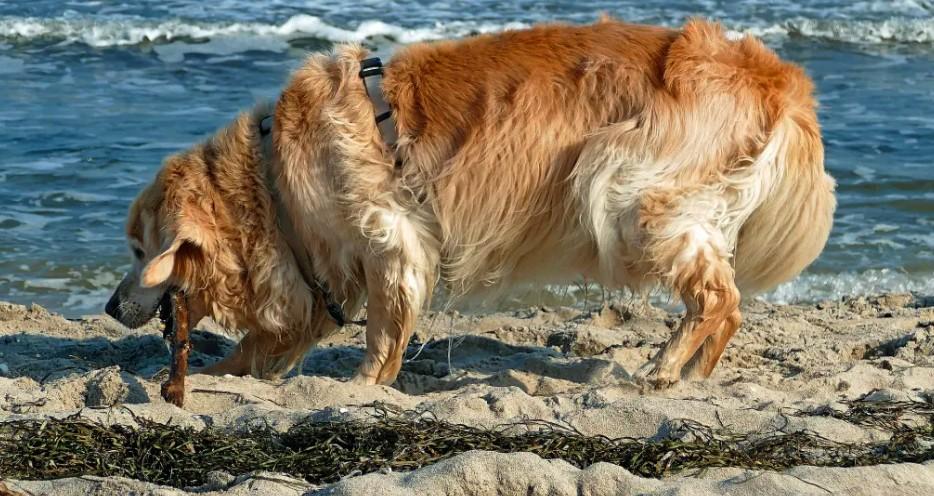 Vegetable Origin
Vegetable Origin
4+ MIN
13/03/2023
Seaweed for dogs
If you've ever taken your dog to the beach, you may have caught them trying to munch on the seaweed that's made its way to land. Dog food with seaweed is a nutritious snack that can boost your dog's overall wellness due to its iodine concentration. The safest way to take advantage of the benefits of seaweed for dogs is to use a powdered supplement or processed seaweed without seasoning. Adding a sprinkling of powdered seaweed for dogs can help them take advantage of its nutrient and mineral-based composition, including iodine
Is seaweed safe for dogs?
Seaweed is safe for dogs – so long as it's not wild seaweed. The issue with wild seaweed is that it shrinks due to heat exposure, meaning it will absorb water when it enters your dog's digestive system and expand, which could lead to blockages. Wild seaweed is also risky for your dog as it can contain pollutants that you could make your dog unwell. Processed seaweed is safe for dogs in small quantities. The best choice of seaweed dog food is a powder supplement or a small amount of processed seaweed free of seasoning or pollutants.
Seaweed powder for dogs can make it easier for your dog to consume this nutrient-rich supplement or snack. You should always consult your vet before starting your dog on any new form of food. You'll also want to consider the quantity of dog food with seaweed that you're feeding your pet. Due to its iodine content, you want to avoid your dog overconsuming seaweed in any form.
Seaweed for dog benefits
If you've stumbled onto this article, you're probably wondering, 'is seaweed good for dogs?'. The answer is that seaweed snacks for dogs can be the perfect way to ensure your pet is getting their daily nutrients. Dogs eat seaweed for its nutrient-rich properties as it contains iron, iodine, magnesium, protein, and omega-3s. Your pet dog needs these nutrients just as much as you do. The sea may seem like an unusual place to look for a nutrient-rich snack, but our oceans contain more seaweed – at least 10,000 different types – than herbs that you'll find on land. With thousands of different types of seaweed, everything from their taste to colour and nutritional value can be different.
Every variant of seaweed has its own nutrient makeup – but each contains the mineral Iodine – the major selling point of any seaweed supplements for dogs. It's an essential mineral for your dog's long-term health as it boosts energy levels, prevents thyroid issues, helps to calm nerves, and supports your dog's immune system. When your dog is deficient in iodine, it can lead to restlessness, unexplained weight gain, and heart and lung problems. Iodine isn't a mineral typically included in dog food, but the rise in hypothyroidism in dogs has led to an interest in dog food with seaweed for its iodine content.
Kombu seaweed is the variant with the highest iodine content, although any form of seaweed without additional seasoning or pollutants is suitable for your dog. It's also rich in calcium, copper, and vitamins A, B, C, and E. The most popular seaweed for dogs is true kelp – also known as laminaria. This brown alga is made up of 25% protein with over 60 types of vitamins and minerals, along with more than 20 amino acids. Iodine isn't the only reason you should start using seaweed dog food.
When dogs eat seaweed, it can help promote the overall health of their skin and fur to prevent fur loss or skin irritation. Most seaweed for dogs is also an ideal source of vitamin B12, a necessary nutrient for maintaining your dog's nervous system and promoting their brain health. Incorporating seaweed snacks for dogs into your pet's diet can help improve their gut health and tackle constipation.
Seaweed supplement for dogs
With seaweed becoming a popular supplement and snack of choice for humans, it's no surprise that seaweed supplements for dogs are rising in popularity. Seaweed for dogs' benefits focus around its mineral and vitamin composition – but you want to be mindful of what type of seaweed you're giving your dog. Seaweed dog food is only suitable when it is not produced with additional seasoning.
Adding a seaweed supplement for dogs into your pet's food is the best way to give them the benefits of seaweed. You can use seaweed powder for dogs to sprinkle into their food to boost their overall health.
When you start using dog food with seaweed or seaweed powder for dogs, it's best to monitor your pet's reaction. Look out for any change in their behaviour, overall health, and energy levels. If your dog has pre-existing thyroid issues, it's best to consult your vet closely about how much seaweed you should incorporate into their diet. The easiest and safest way for your dog to consume seaweed is through supplements or by grounding seaweed into their food. You'll want to ensure that the seaweed supplement that you use is suitable for your dog's size and breed
by Bygora
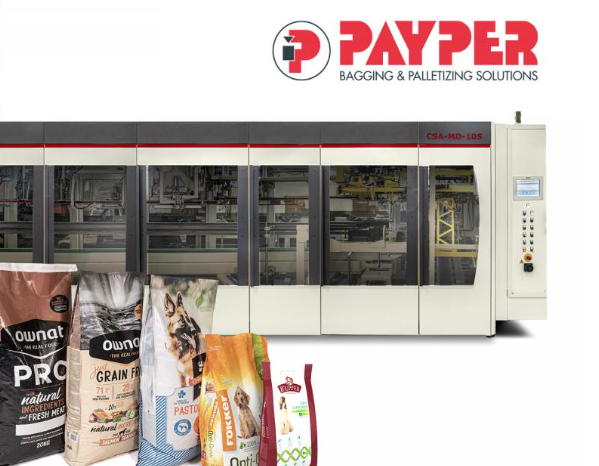 Packaging
Packaging
1+ MIN
10/03/2023
PAYPER CSA Open Mouth Bagging Solution
PAYPER was established in Spain in 1973, since then its clients, from multiple industries and especially from the PET FOOD sector, supported them with more than 450 projects with PAYPER technology in Latin America. From their headquarters in Mexico and Brazil, they offer a close service throughout the entire process: commercial, after-sales and spare parts. Among its countless solutions is the CSA automatic bagging machine, a modern and precise open-mouth bagging solution, suitable for the high standard requirements in the PET FOOD sector. It solutions adapts to the special conditions of each manufacturer: bag types, nature of the product and speed requirements. PAYPER is definitively an experts in new generation of packaging lines for bulk solids. We invite you to LEARN MORE about their equipment and solutions. By: All Pet Food
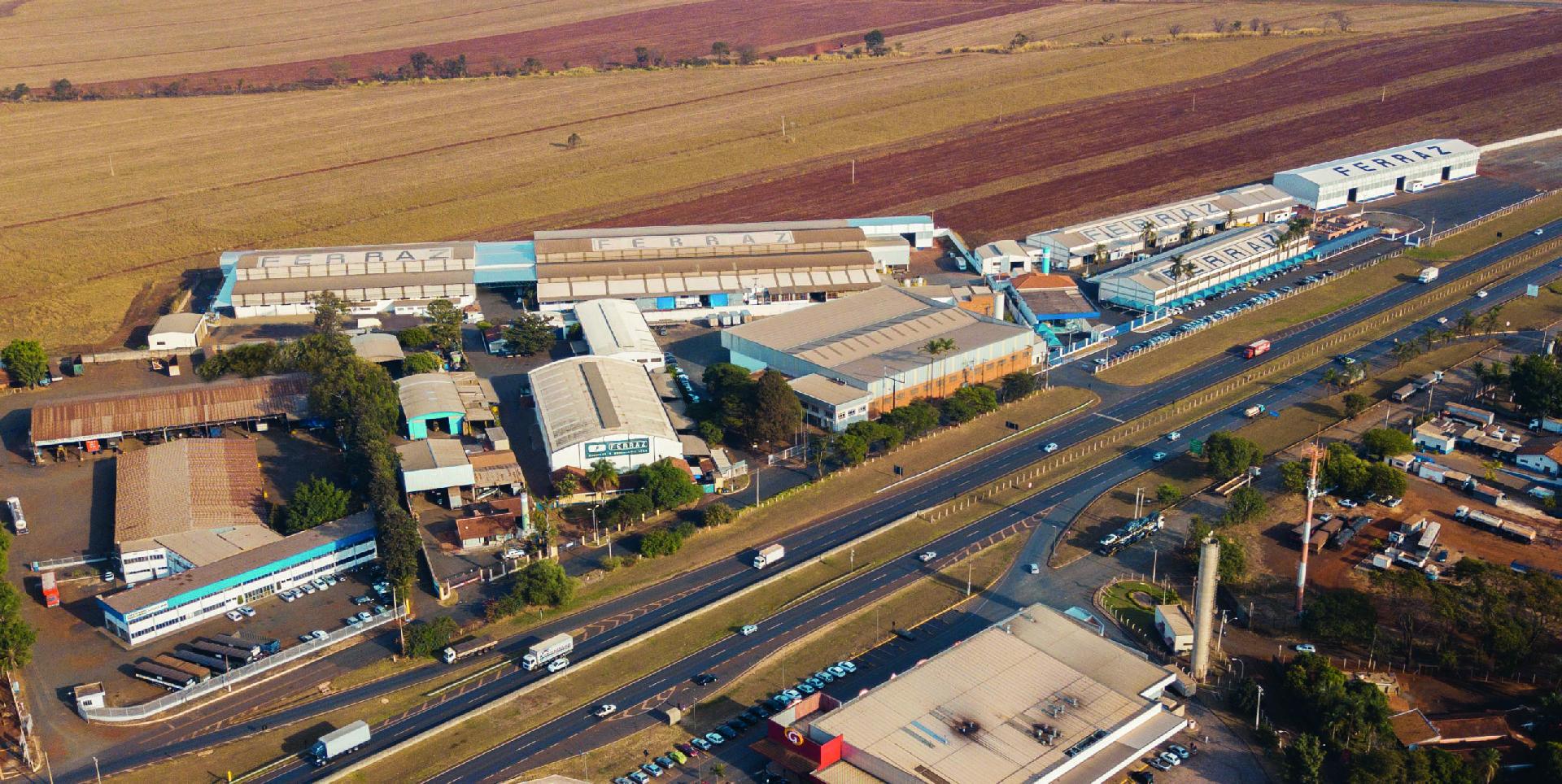 Market Information
Market Information
3+ MIN
09/03/2023
Ferraz: from Brazil to the world
Over the years, we have greatly expanded our products and services portfolio until reaching the current stage, in which we supply complete plants for the production of 400 kg extruded meal feed at 16 tons per hour, 400kg pelletized at 30 tons per hour, and plants for mineral salt and premix production. Nowadays, we are leaders in the market for machinery for extruded food production in Latin America. In addition to the equipment, we also supply spare parts, through the division called "Ferraz Parts", such as dies and roller covers for all the main pellet brands of the market. Our arrays, made of stainless steel material with perforation technology using gun drills and a vacuum quenching process, are what ensure an excellent roughness profile for the holes. We also provide services such as Munck leasing, freight through our own fleet, and installation of compressed air, steam, liquids, and electrical networks. The 'Autofer' division, our subsidiary dedicated to electricity and automation, has a large and qualified team for the supply of power and control panels, CCM, and industrial automation software. One of the great company's competitive advantages is its capability to supply from the receiving hopper to the bagging machine, that is, all the necessary equipment for the feed production process. In addition, we have the premise of dedicating special attention to after-sales, for which we maintain a high stock of spare parts for immediate delivery, and we also have a team of qualified technicians and specialists in each process, who are always visiting our clients and checking if needs some support, such as maintenance services (preventive and corrective) or training for its operators. We monitor and support clients from the project-design phase, equipment manufacturing, delivery, start-up, and training of contracted operators. Currently, we sell our products and services to 21 countries, with Latin America and the African continent as our principal markets. We consider it of great importance that the company always maintain its original values, which are respect and focus on customer satisfaction, the continuous search for innovation, and the humility to learn and share knowledge with all the people we are in contact with. Significant investments are also made in our team's qualification, either through courses and training given in the company itself or through cost allocations for undergraduate and specialization courses. We always seek to offer the best cost/benefit ratio for our customers, which is why we attach great importance to maintaining short delivery times, as well as competitive prices and strict quality standards. The delivery time for complete factories, for example, is currently 4 to 6 months, depending on the size and complexity of the project. One of the most outstanding pieces of equipment in our current portfolio are the twin-screw extruder and the model for the production of 10 to 12 tons/hour, E-150D, which was recently launched on the market. We have already observed great interest and demand for this equipment, mainly due to its high flexibility and productivity. By: Ferraz Machinery Source: All Pet Food Magazine
 Market Information
Market Information
1+ MIN
08/03/2023
Change in the Pet Division
Mars, owner of brands such as Pedigree and Whiskas, introduces its new Petcare Marketing Director in Brazil: Eduardo Lima, who has been in the company for 17 years, the executive has already held executive positions in the marketing and sales areas, in Brazil and US, being his last position as Portfolio´s Director for LATAM (cats). In addition to the marketing position, Eduardo will be responsible for the SRM (Strategic Revenue Management), Trade Marketing and Category Management departments, reporting to Gustavo Bruno, CEO of Mars Petcare in Brazil. "In this role, I remain committed to maintaining our leadership in the market, developing new products for pets and pet parents, bringing solutions, exploring new business opportunities and promoting innovation, in addition to investing in the development of our team", comments the director All Pet Food
 Home
Home
2+ MIN
07/03/2023
Pet Industry Leadership Summit 2023 Sets Attendance Record
More than 275 C-level executives, including product distributors, manufacturers, retailers and other pet care business leaders, came together for networking, thought leadership, and presentations from experts on market research, economic forecasts and more. Two new features helped fuel the growth in attendance, according to organizers. Prior in-person Summits were only open to members of the host organizations, the American Pet Products Association (APPA), the Pet Advocacy Network, the Pet Industry Distributors Association (PIDA) and the World Pet Association (WPA). For 2023, registration eligibility was expanded to include any company involved in the pet care space. A special first-time attendee registration discount incentive also drew a record-breaking 76 attendees from 50 different companies, organizers reported. 'The Summit is an exceptional opportunity for pet business leaders to collaborate with their peers, discuss opportunities and challenges, and get market insights that isn't offered at any other single event,' said Celeste Powers, president of the PIDA. 'We're thrilled at the positive feedback we received both onsite and in the post-event survey.' More than 85 percent of attendees gave a positive rating to the event. Comments included, 'Was a great place to meet with leaders in the industry. This is access I could not get at other pet industry events,' and, 'The larger attendee group led to more engaging conversations and insights.' Presentation highlights included keynotes from Pulitzer Prize-winning author and humorist Dave Barry, economist Chris Kuehl of Armada Corporate Intelligence, and talk show host and entrepreneur Troy Hazard. The event also included sessions on the economic impact of the American pet sector, pet ownership trends, and building an analytics strategy, among others. The 2024 Summit will be held on Jan. 22-24 at the Lowes Coronado Bay Resort in Coronado, Calif. Registration opens in September 2023 on PIDA's website. All Pet Food
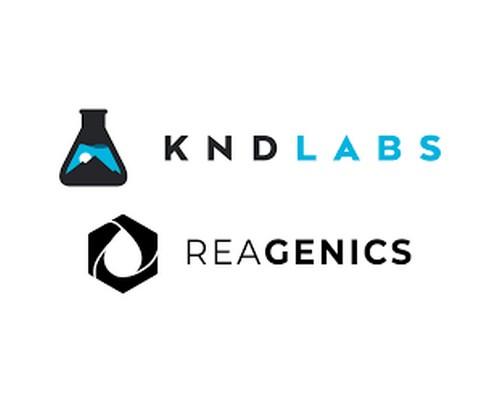 Formulation
Formulation
2+ MIN
06/03/2023
KND Labs & ReaGenics Announce Partnership to Expand Food Line & Nutraceutical
As a producer of many ingredient forms including powdered isolates, distillate oil, and liquid or powder water-soluble solutions, KND Labs currently serves many industries and is an ingredient partner to many of the world's largest product brands. 'As a proven partner across many industries from food and beverage to nutraceuticals, pet, and cosmetics, KND Labs is thrilled to expand our supply chain and product offerings through this partnership with ReaGenics,' said Nich Wilson, KND Labs president. 'This capability directly supports the company's growth goals and allows us to target, extract and commercialize revolutionary ingredients within the KND Labs platform we are known for.' ReaGenics is a Nes Tziona, Israel-based plant molecular harvesting company that provides technology to support the growth of living plant stem cells economically and at scale, without having to depend upon nature's elements. Through its proven technology and process, the company is able to access molecular materials that are of interest in various industries including food and beverage, herbal medicine, and other applications. With processing plants in the Denver area, KND Labs will utilize the ReaGenics partnership to move into new areas of expertise in the coming years, while offering ReaGenics access to its established production facilities and customer distribution network. 'Our world urgently needs a way to keep up with the growing demands of medicines, food supply chains, and the problem of so many of the world's plant species on their way to extinction,' said ReaGenics CEO Dr. Michael Kagan. 'We believe ReaGenics will be part of the solution to ensure these global needs and challenges are met. This partnership with KND is an important first step.' The partnership will benefit both companies' growth efforts in the nutraceutical, food, and pet industries, with KND Labs focusing on making new products available. 'Many customers are looking to KND Labs for our industry expertise and scaling capabilities as they aim to diversify their ingredient supply chains,' said Dave 'Swany' Swanwick, KND Labs director of sales. "This partnership with ReaGenics enables us to offer a greater variety of ingredients, at scale, to our direct partners as well as for network marketing sellers of hemp plant-derived products, and it will allow us to further grow our footprint as the premier provider of high-demand nutraceutical ingredients. We are very excited to be improving supply chain access and commercializing rare ingredients worldwide.' Source : Pet Business
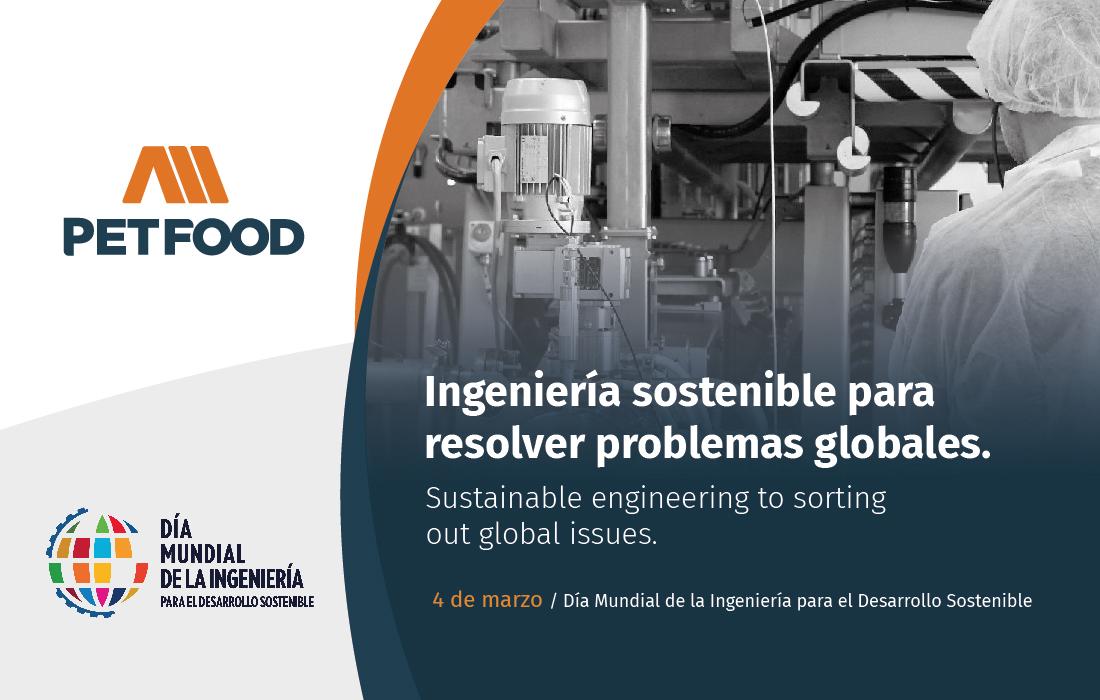 Market Information
Market Information
3+ MIN
04/03/2023
World Day of Engineering for Sustainable Development
This date is intended to promote the achievements and relevance of engineering in our world today and to enhance the understanding of the general public, regarding the preponderant role that engineering and technology have for modern life and sustainable development. The proposal for UNESCO to designate this date was led by Dr. Marlene Kanga, President of the World Federation of Engineering Organizations (WFEO), at the UNESCO Executive Council, held in April 2019 in Paris. In addition, a logo was created for this celebration that contains the 17 colors with which the United Nations Sustainable Development Goals (SDGs) are represented, framed in the 2030 Agenda of that organization. Thus confirming the commitment of the global engineering community to develop the strategies, capabilities and best practices needed to solve global problems with engineering solutions. The SDGs, also known as Global Goals, were adopted by the United Nations in 2015 as a universal call to end poverty, protect the planet, and ensure that by 2030 all people enjoy peace and prosperity. The SDGs are integrated: they recognize that action in one area will affect results in other areas and that development must balance social, economic and environmental sustainability. The 17 SDGs No Poverty. Zero Hunger. Good Health and Well-being. Quality Education. Gender Equality. Clean Water and Sanitation. Affordable and Clean Energy. Decent Work and Economic Growth. Industry, Innovation and Infrastructure. Reduced Inequality. Sustainable Cities and Communities. Responsible Consumption and Production. Climate Action. Life Under Water. Life on Land. Peace and Justice Strong Institutions. Partnerships to achieve the Goal. That is why engineering plays a key role in achieving these objectives, since it uses the principles of science and mathematics to develop practical applications in food, water, energy, environment, sustainable cities, resilience to natural disasters. and other areas, which are crucial for all humanity. Countries have committed to prioritizing the progress of those furthest behind. Therefore, the creativity, knowledge, technology and financial resources of the whole society are necessary to achieve the SDGs in all contexts. The entire pet food industry faces the challenge of developing increasingly sustainable and environmentally friendly production processes that collaborate with the fulfillment of the SDGs. The role of engineering is essential to build equipment that minimize impact, using consciously and efficiently using those natural resources necessary to meet the companies production objectives, in this constantly growing industry. On the other hand, constant research allows the discovery of natural ingredients that fits to pet food formulas, to replace raw materials with a negative environmental impact, without neglecting the health and development of each pet, according to its breed, size, age, etc. In addition, the phenomenon of the pets humanization and the great owners and new generations commitment, with everything related to the care of the planet, also drives those who produce packaging to present sustainable options. This date should not be unnoticed, as it reminds us that adding actions to achieve the SDGs is not only an Engineering commitment but an individual responsibility of each person who lives in the respectable earth plantet. By: All Pet Food
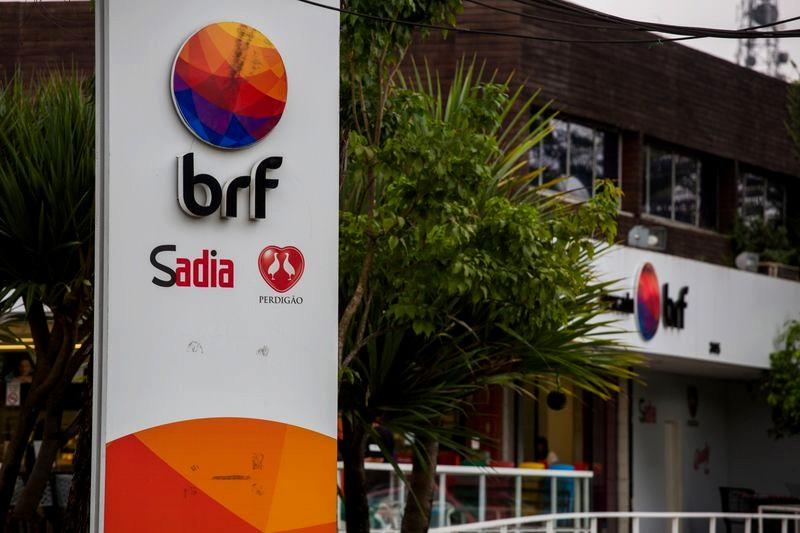 Market Information
Market Information
1+ MIN
03/03/2023
BRF Is Said in Talks to Sell Pet Food Unit Amid Overhaul
The food company is working with Santander SA's Brazilian unit to sell the division for about 2 billion reais ($384 million), the people said, asking not to be named since the discussions are private. BRF paid 1.35 billion reais for the assets in 2021. BRF has about 10% of the fast growing Brazilian pet food market with brands including Balance and Gran Plus, according to company figures. Shares in BRF reversed losses on the back of the news and were up 2.6% at 4:48 p.m. local time in Sao Paulo. BRF declined to comment. Santander didn't immediately reply to a request for comment. BRF, one of the world's biggest poultry exporters, is considering plans to reduce leverage and focus on its main business of chicken, pork and processed food production. The Sao Paulo-based firm has been going through an overhaul since meat baron Marcos Molina dos Santos became its biggest shareholder with 33% of the shares. Molina is the founder and chairman of beef producer Marfrig Global Foods SA. BRF, which reports its fourth quarter results on Tuesday, has seen shares drop about 60% over the past year to 6.63 reais, giving it a total market value of 7.2 billion reais Marfrig, which bought a stake in BRF in 2021 and started consolidating its results last year, climbed to session highs amid the Bloomberg News report, gaining as much as 3.8% by Tatiana Freitas, Cristiane Lucchesi and Vinicius Andrade - Bloomberg
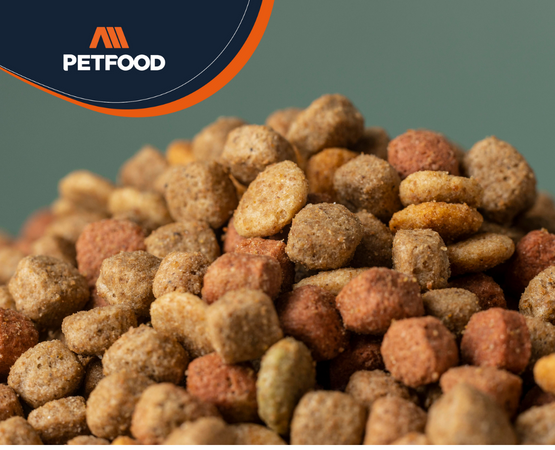 Grinding
Grinding
4+ MIN
02/03/2023
Por Ludmila Barbi T. Bomcompagni
Grinding: A fundamental point in the manufacture of extruded dry food for cats and dogs
The grinding process consists of reducing and standardizing the particle size of raw materials, increasing the contact surface, and consequently improving steam and water absorption during the extrusion process, favoring dough cooking. All these aspects affect the texture and uniformity, avoiding partially cooked hard particles in the product. Granulometry is influenced by the configuration of the mill and the parts that compose it. Before entering the mill, the presence of sieves and magnets will prevent foreign materials from reaching equipment, damaging parts, and impairing grinding quality. At the mill exit, to ensure the grinding quality, it is necessary to monitor the granulometry, which can be affected by perforated sieves or worn hammers, which will contribute to lower grinding efficiency and quality. Better steam and water absorption in extrusion, as a result of quality grinding, improves the efficiency of starch gelatinization, the process of transforming granular starch into a viscoelastic paste. Quality grinding and cooking allow better kibble expansion, formation, and structure. In general, product expansion is directly related to texture, being the products with the highest expansion, the most crunchy ones. Some of the parameters used to assess the degree of cooking of dietary ingredients that are subjected to extrusion are density and water absorption rate. Foods with high density and low water absorption are signs of poorly expanded products, with inadequate starch gelatinization and less nutrient utilization (Camire, 2000). The density of the expanded products is an important characteristic because, even indirectly, in addition to the expansion index, it indicates the degree of transformation of the starch granule. In the drying process, heat transfer is responsible for liquid evaporation, present in the food, and mass transfer by water movement from the food interior to its surface, and from there to the environment. Therefore, drying is linked to both environmental and intrinsic conditions of the material being dried, which influence evaporation and water molecules diffusion rates, respectively. Therefore, a kibble with good expansion and a uniform structure allows air to pass through it evenly, drying it properly, unlike a product that was compacted because it did not have an adequate process. Even the kibble expansion and structure, also interfere with the process of applying the liquid. The croquettes must have the capacity to absorb fat since their efficiency depends on the size and porosity of the extrudate. A well-extruded product with a good structure provides better penetration and retention of the liquid coating. Cereals (rice, corn, and wheat) are the most widely used starch sources in extruded dry food for dogs and cats. Some studies have shown that, if correctly extruded, cereal starch has an apparent digestibility greater than 95% for cats (DE OLIVEIRA et al., 2008) and 98% for dogs (CARCIOFI et al., 2008). However, starch digestibility can be affected by factors such as starch composition and physical form, protein-starch interactions, cell integrity, and the physical form of the feed. BAZZOLI (2007) evaluated the influence of milling of rice, corn, and sorghum on the apparent digestibility coefficient (ADC) of nutrients and fecal score in diets for dogs and found that there was a difference and interaction between carbohydrate sources in different millings. Mean starch and non-extractive nitrogen (ENN) ADCs were similar for the maize and sorghum diets, and higher for the rice-based diet. For maize and sorghum, coarse grinding had a negative effect, with values lower than those of diets prepared with fine and medium grinding. Still according to BAZZOLLI (2007), regarding the fecal score, there was no ingredient effect either, only grinding. The evaluation of the contrasts shows that the higher the granulometry, the worse the fecal score for the three starch sources, and the worst score, being obtained with milled rice in a coarse granulometry. The evidence shows that the higher the granulometry, the worse the fecal score of the diets, a fact that is probably due to the decrease in the starch gelatinization index, which results in less dry matter in the feces and a worse score. In cats, KIENZLE (1993) found that the ADC of starch in a diet containing coarsely ground raw corn was 72%. When the corn was cooked or finely ground, the ADC of the starch was 100%. Starch digestibility alters and largely determines the postprandial blood glucose wave and the insulin response of the animal. In this way, the faster and more complete the digestion, the faster and more intense the triggered curve. This is an aspect that must be taken care of when thinking about food for animals with diabetes mellitus, obesity, pregnancy, cancer, and advanced age, which need greater control of the glycemic curve. Therefore, we conclude that grinding is a key point in high-quality product development. It must be standardized, according to the reality of each factory, in addition to taking into account product purpose and life stage or state of health of the pet that will consume the food. Authors: Luana Pucca, Ludmila Barbi y Erika Stasieniuk Source: All Pet Food Magazine
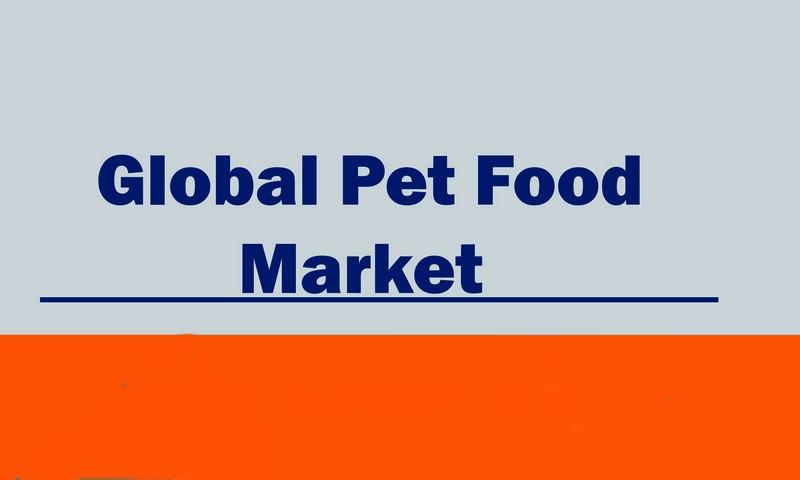 Market Information
Market Information
3+ MIN
01/03/2023
$108 Billion Pet Food Global Market to 2026
The global pet food market reached a value of US$ 108 Billion in 2020. Over the years, the growing number of pet-owners has resulted in an extensive demand for pet food. Research and studies conducted by the manufacturers have also increased their knowledge of pet nutrition. In-line with this, they are now offering products which ensure palatability and meet the nutritional requirements of pets. Moreover, several pet food associations and federations have introduced strict legislation for the manufacturers to produce safe and high-quality pet food. Looking forward, the publisher expects the global pet food market to grow at a CAGR of 4.3% during 2021-2026. As pet food helps in combating skin allergies and infections as well as improving the overall health and life expectancy of pets, the owners are increasingly looking for pet food products that address these health concerns. Manufacturers are also introducing products specific to the breed, age and size of pets in smaller, disposable, single-serve containers in order to offer convenience to both the pets and owners. Apart from this, pet food companies are developing organic variants which are made using ingredients that are grown without the use of pesticides, synthetic fertilizers, hormones or antibiotics. This has increased consumer's interest in natural formulations, thereby increasing the potential of the companies to further diversify their offerings. Global Pet Food Market Segmentation: Break up by Pet Type: On the basis of pet types, the market is segmented into dog food, cat food and others. Currently, dog food dominates the market due to increasing dog ownership coupled with the rising pet humanization trend across the globe. Break up by Product Type: Based on product types, dry pet food represents the most popular product type as it is more affordable and has a long-standing market presence. Dry pet food is followed by wet and canned pet food, and snacks & treats. Break up by Pricing Type: The market is also categorized on the basis of pricing into mass products and premium products. Amongst these, mass products account for the majority of the global sales. Break up by Ingredient Type: On the basis of ingredients, the report finds that animal-derived pet food is the leading segment, followed by plant-derived pet food. Break up by Distribution Channel: Based on distribution channels, supermarkets and hypermarkets currently hold the largest share as they offer convenience to the consumers. They are followed by specialty stores, online stores and others. Among all the distribution channels, online stores are expected to exhibit a strong growth in the coming years. Regional Insights: Region-wise, North America enjoys the leading position in the global pet food market on account of the growing pet adoption rate in the region. Other major regions include Asia-Pacific, Europe, Latin America, and Middle East and Africa. Competitive Landscape: The market is highly fragmented with the presence of numerous small and large manufacturers who compete in terms of prices and quality. Some of the leading players operating in the market are: Mars Petcare Inc. Nestle Purina Pet Care Hill's Pet Nutrition The J.M. Smucker Company This report provides a deep insight into the global pet food industry covering all its essential aspects. This ranges from macro overview of the market to micro details of the industry performance, recent trends, key market drivers and challenges, SWOT analysis, Porter's five forces analysis, value chain analysis, etc. The report also provides a comprehensive analysis for setting up a pet food manufacturing plant. The study analyses the processing and manufacturing requirements, project cost, project funding, project economics, expected returns on investment, profit margins, etc. This report is a must-read for entrepreneurs, investors, researchers, consultants, business strategists, and all those who have any kind of stake or are planning to foray into the pet food industry in any manner. For more information about this report visit https://www.researchandmarkets.com/r/8qbykg All Pet food
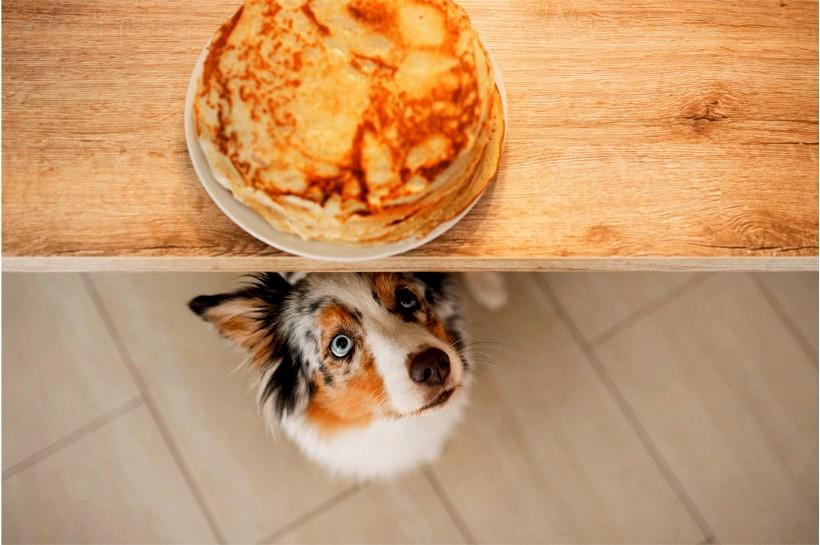 Dogs
Dogs
2+ MIN
28/02/2023
Gluttony and Dogs
We are going to start this article by defining the term gluttony, it comes from the Latin gluttire, which means to swallow food excessively or without measure. The biggest problem lies in the harmful consequences that obesity has on the health of our pets, the most frequent being joint, cardiovascular and endocrine diseases. An obese dog is a reflection of a sick dog, which translates into a poor quality of life and a decrease in life expectancy. Generally, weight gain is due to an imbalance between energy intake and use, always associated with sedentary behaviors. It is vitally important to take our dog's diet into account in the early stages of development, an obese puppy will be an obese adult dog. If, on the contrary, we maintain an adequate feeding routine, if we supply a balanced and good quality diet, adjusting the dose to the age and weight of our pet, the chances of our puppy being an obese dog will decrease significantly. Exercise will be an inevitable discipline in the life of our dogs and, like the diet, it must be adjusted to the stage and condition of the animal. Ideally, to control your pet's gluttony, we recommend incorporate feeding schedules, teach him to remain calm at mealtime and if you see him agitated or anxious, wait until he is calm to feed him. If the problem is they eat very anxiously and/or quickly, you can use a special type of dish for these cases, which prevents the pet from taking large amounts of food to its mouth at the same time. Ask your trusted veterinarian the tools that make it easier for you to control your pet's gluttony. by Vitalcan Source: All Pet Food
 Vegetable Origin
Vegetable Origin
7+ MIN
24/02/2023
Growing Demand for Prebiotics in Pet Food
For some time now, animal digestive health has been tracking the popularity seen in human nutrition. In fact, even before the pandemic had made pet owners more health conscious, a study showed that 76% of cat and dog owners believed that actively looking after their pet's digestive health was essential for their overall health. Following its global research in 2021, BENEO was able to identify ten key drivers that cat and dog owners perceived were vital to making pet foods seem healthier.
Ten key drivers to healthier pet food perceptions
Almost 90% of cat and dog owners said that using natural ingredients was their number one way for pet food to seem healthier to them, closely followed by using less or no preservatives and additives. Reducing fat and adding fibre were seen as strong influencers by over 80% of pet owners, and of similar importance was having recognisable ingredients on the label, that were also not genetically modified. Three quarters also wanted to know where the ingredients had been sourced from and they wanted to see a short ingredients list on pack. Interestingly, plant-based ingredients and the addition of prebiotics also made products seem healthier to over 70% of cat and dog owners.
Digestive health becomes mainstream
With added fibre and prebiotics two of the key drivers to make a pet food seem healthier to pet owners, it is no surprise that digestive health has well and truly moved into the mainstream. In fact, 83% of dog and 84% of cat owners consider digestive health as extremely or very important. Today around 1 in 4 global new pet food products promotes a digestive health claim or prebiotic benefit on package.
The link between a pet's digestive health and their overall health has been made by pet owners, however, not all fibres are the same. At present, a wide range of fibres can be used in dog foods. These include insoluble fibre sources such as cellulose or blends of insoluble and soluble fibres, which include sugar beet pulp and wheat bran, as well as fully soluble fibre sources such as inulin-type fructans. Based on the fibre type, they behave differently in a pet's digestive system, significantly influencing their potential digestive health benefits.
Why is prebiotic fibre important?
Dietary fibre is the indigestible part of plant material and can be soluble, insoluble or a mix of the two. Insoluble fibres can create bulking and a longer feeling of fulness, while also supporting bowel function. Soluble fibres include fermentable fibres (such as those found in sugar beet pulp) and prebiotic fibres. While both are dissolved and fermented in the colon, only prebiotic fibre sources like inulin-type fructans specifically feed healthy gut bacteria when they reach the colon. Prebiotics are 'a substrate that is selectively utilized by host microorganisms conferring a health benefit'. Both the criteria for feeding beneficial bacteria and conferring a health benefit need to be fulfilled for an ingredient to be defined as a prebiotic. In comparison to other fermentable fibres, chicory root fibres - namely chicory inulin and oligofructose - are natural prebiotics for many animals like cats and dogs and they support a healthy microbiota along with other health benefits.
Products masquerading as prebiotic
With almost 80% of respondents stating that 'prebiotic' on-pack communication affects their interest in buying a certain food for their pets, this has led to some suppliers making unfounded 'prebiotic' claims for their products. In the pet food industry at present, there are a profusion of products that are being promoted as prebiotic but in fact aren't (such as fermentable fibres-containing ingredients, or even resistant starches). However, the only established prebiotics that have been scientifically proven to selectively encourage the growth of good bacteria and deliver related health benefits in humans - with corresponding evidence in pets as well - are inulin-type fructans, including BENEO's natural chicory root fibres Orafti® Inulin and Oligofructose.
When the chicory root fibres reach the colon, they are selectively fermented by the good microbiota residing in the pets' intestine, such as bifidobacteria, and selectively stimulate their growth and proliferation. Additionally, their fermentation by selected microbiota results in the production of Short-Chain Fatty Acids (SCFAs), namely acetate, propionate, and butyrate. These fatty acids decrease the lumen pH in the gut and enhance its structure. They also strengthen the gut mucosa's barrier against pathogenic bacteria, as butyrate is the primary source of energy for the intestinal cells.
Scientifically proven prebiotic effect
BENEO's Orafti® Inulin and Oligofructose have been studied extensively for over two decades both in human and animal nutrition, and the scientific foundation for their prebiotic effect is strong. In human nutrition, a recent systematic review with meta-analyses that applied the Cochrane methodology (considered the strongest methodology in the hierarchy of scientific evidence) and was based on intervention studies, confirmed the prebiotic effect of inulin-type fructans sourced from the chicory root. In dogs and cats, studies have shown that the selective fermentation of chicory root fibres Orafti® Inulin and Oligofructose by specific beneficial bacteria leads to an increase in SCFA production, and is linked with nutritional benefits for pets, that go beyond the gut. For instance, as part of their prebiotic effect and effect on digestive health, chicory root fibres support calcium and mineral absorption in dogs. , Further research has shown that chicory root fibres can support blood sugar management in dogs , as well as weight management in both, dogs and cats.
Absorption of minerals and bone health
The absorption of minerals is essential to an animal's growth and bone strength. From their selective fermentation which produces SCFA, inulin-type fructans reduce the luminal pH and nurture the intestinal mucosa with butyrate, thereby allowing for additional calcium absorption in the lower gut (the colon). Studies with oligofructose have demonstrated increased mineral uptake in dogs, and among others calcium, therefore supporting bone health.
Supporting weight and blood sugar management
Being overweight or obese are common in companion animals, and according to a 2019 report from the UK's Pet Food Manufacturers' Association, 51% of dogs and 44% of cats in the UK are classified as such. As well as supporting a pet's intestinal health, chicory root fibres also show positive effects related to weight management in pets and blood sugar management in dogs. First studies show that including Orafti® Inulin and Oligofructose in a pet's diet can curb their appetite, improve satiety and hence decrease voluntary food intake. In doing so, chicory root fibres help to maintain the healthy condition of a pet's body. Additionally, since inulin-type fructans are non-digestible carbohydrates and dietary fibre, they do not trigger a rise in postprandial blood glucose or insulin concentrations. Hence, they support blood sugar management in dogs. What's more, studies in dogs have shown that feeding them with chicory prebiotics can allow for a lower blood sugar response after a meal , and this benefit can extend to a subsequent meal taken hours later, even if that meal doesn't include chicory root fibres; which is called the second meal effect.
Support of renal health in cats
Cats are sensitive to kidney disorders as they age, and one indicator of a problem can be elevated levels of blood urea nitrogen. Typically, in healthy animals the liver produces urea to clean up the nitrogen from the blood, which then travels to the kidneys through the bloodstream, where it is then filtered and excreted in the urine. In ageing cats, this renal metabolism might become less effective and nutritional solutions, amongst other things, could be supportive. Inulin-type fructans such as Orafti® Inulin and Oligofructose have been shown to induce a shift in nitrogen metabolism, through increased nitrogen excretion via the feces , and decreased clearance in the urine, therefore representing a potentially valuable nutritional support for renal function.
With owners concerned about ingredients labels and their pet's long-term health, chicory inulin-type fructans are well placed for both cat and dog food product development that delivers natural support to a pet's intestinal health. BENEO's Orafti® Inulin and Oligofructose are produced from non-GMO chicory roots, which are locally sourced from farmers close to the production sites. Processed in two state-of-the-art plants in Belgium and Chile, both of which have food and feed certification, these functional dietary fibres meet the highest safety and quality standards. They are acknowledged as feed materials in the EU and some of them by the AAFCO in the US. Orafti® Inulin and Oligofructose can be qualified as natural ingredients and used in both dry and wet pet foods, or in snacks. BENEO offers a customisable range of chicory prebiotics that is suitable for a wide range of life stages and animals.
Natural, recognisable, and health-promoting ingredients are key drivers to pet food purchasing. With more and more owners making label-based choices, BENEO's chicory root fibre ingredients are valuable assets that help manufacturers deliver quality pet food products with a range of health benefits, and whose natural credentials appeal to pet parents.
For further information on BENEO and its ingredients, please visit: www.beneo.com and www.beneo.com/news or follow BENEO on Twitter: @_BENEO or LinkedIn: www.linkedin.com/company/beneo
BENEO-Animal Nutrition offers a broad range of natural ingredients with nutritional benefits. The product range is comprised of vegetable proteins, digestible carbohydrates, prebiotic chicory root fibres and specialty rice ingredients. BENEO-Animal Nutrition extends BENEO´s unique expertise in human food to the world of pet food, livestock feed and aqua feed.
BENEO, a division of the Südzucker Group, employs more than 1000 people and has production units in Belgium, Chile, Germany, Italy, and the Netherlands
Source: BENEO source references for this article are available on request
 Market Information
Market Information
5+ MIN
23/02/2023
The interview - Marcelo Beraldo Da Costa
Technology and innovation in AFB International 1) Tell us a little about your professional career. Before joining AFB, my most outstanding experience, I worked as a sales executive focused on ingredient and additives commercialization for animal and human nutrition at Danisco. My journey at AFB started in 2005 as a Sales Executive in Brazil. At that time, we were still starting the company's expansion in Latin America. I worked focusing on the development of all areas necessary for the construction and operation of the facilities in Jaguaríuna - SP. In 2009, I was promoted to Brazil Director. In 2019, in the same position, I assumed responsibility for the operation in Mexico. Now, in 2022, I am very grateful to have been promoted to LATAM Director. I graduated from the State University of Campinas (UNICAMP) with a degree in Food Engineering and a Master's Degree in Business Administration and Marketing from ESPM. 2) Can you give us a small presentation of the company and its mission in the market? AFB International was founded in 1986 in St. Louis, Missouri, USA. It is a subsidiary of Ensign-Bickford Industries, a private company for over 185 years focused on space and defense, pet food science, and biotechnology. Our vision from the beginning was to create the best flavor palatants and make pet food taste amazing. Since then, AFB has partnered with pet food manufacturers to make dog and cat food, treats, and supplements with great flavors. This way, we ensure that pets receive the vital nutrition they need. We further enhance this partnership through research expertise, technical support, and outstanding customer service. 3) What are your main challenges as the new director of the company? What is your focus for 2023? What do you think is essential to focus your efforts on? Now, as LATAM Director, my team and I are challenged to drive sales growth in the region, increase profitability and develop product requirements that meet the ever-changing needs of our emerging market. 4) What is the importance of working on the palatability of pet food products? Even very nutritious food is worthless if a cat or dog doesn't eat it. That's where the right palatability agent can make a difference. Palatabilizers are made with ingredients specially developed to improve food intake. They are created to stimulate one or more of a pet's sensory capacities – olfactory, kinesthetic, taste, and texture. 5) What role do flavorings play in achieving good palatability? Palatabilizers are essential to achieve good palatability, but it is far from being the only influencing factor. There are crucial factors for good food performance: product formulation, quality of ingredients, production process, etc. These factors, together with the right palatability agent for the pet food company's needs, are what will bring performance. That is why it is so important to consult the entire process that AFB provides to its clients because we think of palatability with a holistic view. 6) What flavoring technologies/proposals are currently growing? We noticed great growth in new powder products with very high performance for cats. On the flip side, we've also seen a growing need for cost-effective palatability as manufacturers grapple with last year's cost increases while, at the same time, receiving pressure from their customers about the economy and inflation. So it's a contradiction in needs right now. 7) In relation to the trends in the industry, such as the high pet humanization or changes in food, what changes have you made in your production process, technologies, or products? Today, there is more focus on health and wellness. There is a desire to see more natural ingredients. That's a lot like human eating tendencies, and that's no coincidence. Human tendencies often end up migrating to pet food a little later. For AFB, we see it as a responsibility to ensure that pets enjoy the taste of their meals, while also respecting the trends that our customers want to claim in their diets. Vegetarian dog food requires a vegetarian flavoring agent. A greater interest in wet cat food calls for palatabilizers that work well in this format. The inclusion of a nutritional ingredient may require extra palatability to mask its taste. Therefore, in this scenario of humanization, our innovation must focus on two things at the same time: meeting our customers' palatability needs and their brand philosophy. As the pet food market grows and changes, AFB must constantly innovate to meet the needs of pet food companies. 8) What policies has AFB adopted in terms of the circular economy and sustainability? AFB is committed to sustainable development. We always aim for a balance between protecting the environment and economic growth. We ensure the sustainability of our projects, developments, and products throughout their life cycle, considering economic, environmental, and social impacts. In addition, we train our workers on issues related to the correct disposal of all waste generated in the manufacturing process, also covering suppliers, competent bodies, and representative entities. The treatment of this waste is essential, and we correctly send it to treatment stations by environmental legislation. AFB also achieved a 'Silver' rating with ECOVADIS, a third-party sustainability auditor. This high score reflects the quality of our company's sustainability management. We also completed the self-assessment via SDG Action Manager against the Ten Principles of the United Nations Global Compact and the Sustainable Development Goals (SDGs). The SDGs work as a guideline to improve people's and the planet's conditions by 2030. AFB is committed to achieving this. Another important action is being a member of the Pet Sustainability Coalition for two years, a global not-for-profit organization working to help the pet food industry towards a more sustainable future. 9) What do you consider to be the main current challenges for industry growth? Despite the growth, the pet food market has also been challenging over the past two years. The entire pet food industry has focused on securing supply. The challenges arising from global supply chain issues and material shortages make our industry stronger and improve our resilience, but I believe they also caused pet food innovation to temporarily stall. Fortunately, our industry is coming out of it now, and stronger than ever to continue the transformation of this landscape. Source: All Pet Food Magazine
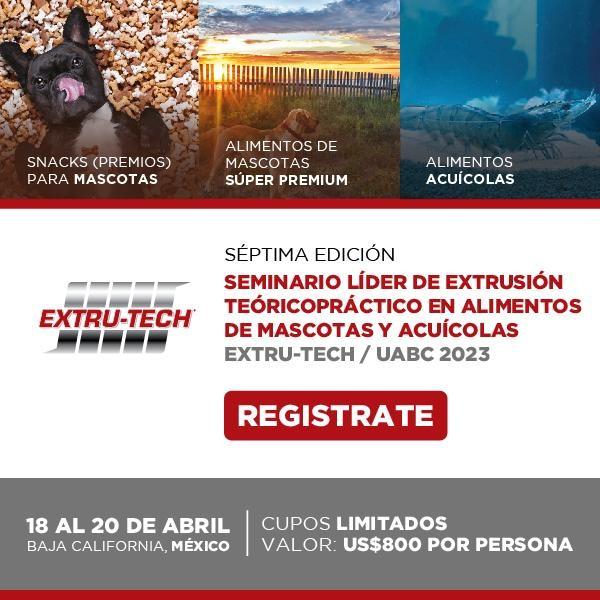 Extrusion
Extrusion
1+ MIN
22/02/2023
The leading Extrusion Seminar in Pet Food and Aquaculture is Back
In conjunction with the Universidad Autónoma de Baja California, Extrutech is ready to offer a in person seminar of high academic value. The seminar will count with theorical and practical activities which will be announced in due course that same day, and are included within the contract. The seminar will be held at the Hotel Coral and Marina, located at Carretera Tijuana-Ensenada Km. 103 N.° 3421, Zona Playitas, 22860 Ensenada, B.C., México, (a few steps from the UABC Pilot Plant). The Hotel offers preferential rates, exclusive for those attending the seminar, prior reservation providing the code: "Extru-Tech Seminar 2023". These RESERVATIONS can be made until Friday, March 17th and are subject to availability. All seminar attendees must be duly registered in advance. Spaces are limited! So, we invite you to contact your Coordinator Isabel Gajardo if interested on attending About Extru- Tech Founded in 1985, Extru-Tech® has installed numerous extrusion systems worldwide designed for the production of human food, pet food, aquatic feed and animal feed products. Extru-Tech® also maintains the reputation of supplying the extrusion industry with superior quality replacement parts. Extru-Tech® currently produces and markets one of the industry's most complete lines of extrusion processing systems. In addition, they offer a full line of ancillary equipment and customized equipment solutions for specialized processes To know more about Extru- Tech we invite you to visit the company´s WEBSITE. Source: All Pet Food
 Market Information
Market Information
3+ MIN
20/02/2023
Pet health trends: pets are now living longer than ever
Can you guess the age of the oldest living dog?
Guinness World Records states that the world's oldest dog was the Australian cattle dog Bluey. She lived from almost 29 years old until she died in 1939. Currently, the oldest living dog is called Spike, and he is 23 years old. Spike is a rescued Chihuahua mix.
Scientists have disproved that one dog year equals seven human years
Dog owners have often counted one human year as seven dog years. However, researchers have concluded that this is a myth, as a new study shows that dogs do not age at this rate.
Researchers at the University of California San Diego School of Medicine have found a new way to calculate a dog's age. The findings suggest a one-year-old dog would have a 'human age' of about 30. By the age of four, they would be approximately 54 years old in 'human years,' and by 14, they would reach the mid 70's.
It turned out that the Labradors used in the research have an expected lifespan of 12 years in dogs, which is 70 years for a human. This is almost the same as the average life expectancy of people in the world. The researchers point out that it is crucial to find out what kind of age a dog is, especially considering that the vet makes health decisions based on this.
Our four-legged friends are living longer than before
We also know that the life expectancy of pets is changing. In some parts of the world, pets' life expectancy has risen by 230%. One source found that the life expectancy of dogs has doubled in the past four decades, and house cats now live twice as long as their wilder counterparts. The average life expectancy of USA dogs increased from 10.5 years to 11.8 years between 2002 and 2016, which is a growth of 11.4%.
Researchers have identified key factors driving the overall increase in life expectancy. Among many reasons why that happens, it seems that owners are gaining a greater understanding and awareness of pet health needs. More than that, a higher vaccination level, better nutrition, and a shift to raising more animals indoors have reduced medical issues.
Everyone wants to own a pet
Pet ownership is rising globally, particularly in millennial households, which tend to be smaller families and have children later in life. Demographic changes, rising income levels, and the Covid-19 pandemic have driven more people to adopt pets.
More than half of the global population has a pet at home. There are likely over a billion pets worldwide and around 38% of all households in the European Union own a pet today. Across all European households, there are more than 110 million cats and 90 million dogs. Among these households, live approximately:
113 million cats
92 million dogs
1 billion other companion animals, including.
52 million birds
30 million small mammals
16 million fish and aquaria animals
11 million reptiles
We spend more money on pets than ever
Pet owners have also been spending more on healthcare and treatments for companion animals in recent decades. In the United States alone, consumers spent an estimated $123.6 billion in 2021 on pets and pet-related products.
Over 50% of animal health products sold in 2021 were for household pets, a switch from just 4 years before (2017) when livestock products were the majority. In the EU, pet owners spend nearly €22 billion on pet food each year, with an average annual growth rate of 2.8%.
Spotlight on innovations in pet health
As pets grow older, they are also facing new health challenges. A growing pet population means a greater need for veterinary care. How veterinarians deliver care for pets and the kinds of illnesses and diseases they can treat are rapidly changing. New technologies and treatments can help veterinarians and pet owners adapt.
This report from Health for Animals shows that artificial intelligence and machine learning are powering tools that help veterinarians deliver an increasingly rapid and accurate diagnosis of diseases in pets. This allows for earlier treatment, which offers a greater chance of success and a lower impact on animal welfare.
'Big data' tools can leverage the accumulated diagnostic profiles of countless animals to pinpoint new risk factors for illnesses like cancer and facilitate better preventative action.
By Qrill Pet
 Micro Ingredients
Micro Ingredients
6+ MIN
17/02/2023
Plasma: A whole Body Health Ingredient
Pets face stress during all life stages including mild and common illnesses, injuries, surgeries, and normal aging. A common thread of any stressor is inflammation. Inflammation can result when the immune system is activated. Inflammation is a normal physical response, usually to injury or illness. It's the body's way of protecting itself by dilating blood vessels and allowing increased blood flow and accumulation of cells to the affected area. The variety of immune cells can lead to addressing the damage and help return to a normal status. It's a crucial response that helps us and our pets – but it can sometimes get out of hand. Two types of inflammation occur in both humans and pets, acute and chronic.
Acute inflammation occurs as a near-immediate response to a specific injury or tissue damage. For instance, when a bone is broken, there's swelling, redness, and heat as your body tries to prevent infection and jumpstart the healing process to help repair damaged tissues. Acute inflammation is a normal process that helps address the injury or tissue damage. Chronic inflammation is longer term and may affect the entire body leading to chronic disease or health issues. Chronic inflammation may result in tissue damage to the body's cells, oxidative stress, and can increase the risk for illnesses. Some reported links between chronic inflammation and malnutrition suggest specific dietary problems and imbalances can spark issues.
When choosing foods, treats and supplements, special attention should be given to functional ingredients that promote health and well-being, including those that have a beneficial effect on managing inflammation, including plasma derived proteins. In numerous, studies across multiple species, research has shown adding plasma to diets has numerous long-term health and developmental benefits.
WHAT IS PLASMA
Plasma is a natural ingredient backed by decades of research demonstrating a proven whole-body effect, modulating inflammation at the source. Consumed orally, the functional proteins in plasma don't interfere with the body's natural immune response to inflammation; instead, they help the immune system to respond more quickly and efficiently.
WHAT COMPONENTS MAKE PLASMA EFFECTIVE?
Plasma contains a complex mixture of functional proteins including:
INFLAMMATION OCCURS AT ALL LIFE STAGES
YOUTH
Puppies and kittens use a lot of energy during their initial days growing and exploring their new surroundings. They need a diet full of calories and specific nutrients that help build healthy muscles and bones, eyesight, their gastrointestinal tract, and mental cognition. Being curious creatures, they go through many life stressors – eating things they shouldn't, getting vaccinations, adjusting to a new environment and life without littermates or mom. These stressors take a toll on young pets and cause their bodies to respond to the stressors instead of using vital energy and nutrients to grow.
ADULT
Adult pets need a quality diet that suits their lifestyle, filled with quality proteins, calories, and nutrients to help maintain proper weight and energy levels and preserve good health. Like when they were younger, adult pets go through many stressful events that cause inflammation. Vet visits, separation anxiety, or unfamiliar surroundings – even thunderstorms cause stress. Some of our pets, particularly dogs, have jobs such as herding cattle, competing in events and hunting, all of which can elevate stress levels.
SENIOR
Senior pets have usually been with their owners for many years and have been loyal and loving companions. Unfortunately, like us, life's stressors and inflammation brought on by advancing age causes pets to slow down. We see inflammation impacting a pet's range of mobility, reduced cognitive function, loss of muscle mass and strength, decreased appetite, and frequently, compromised intestinal health, digestion, and nutrient absorption.
PLASMA SUPPORTS PETS THROUGH ALL LIFE STAGES
Development of the young animal requires good nutritional support while minimizing the effects of inflammation and stress. Plasma provides proteins and amino acids while modulating intestinal inflammation to maintain intestinal barrier function for development and nutrient uptake. This allows our young pets the opportunity to grow and develop properly.
Plasma in adult pet diets helps them overcome negative impacts many stressors can have on their bodies. Plasma in an adult pet diet provides nutrients and support of the total immune system. This allows the adult pet to potentially experience less of the effect of stressors from the different inflammatory events and be more active.
Aging pets tend to experience inflammation at higher levels than at other life stages. In an aging pet, stressors may lead to many negative consequences, such as reduced mobility, cognitive function, strength, and compromised intestinal health. Plasma modulates inflammation both in the intestinal tract and systemically in the body, preventing cognition loss and reducing intestinal inflammation. Consumed by aging animals, plasma can support and improve overall wellbeing in later life stages.
Offering pets foods, treats and supplements containing plasma can help add to lifelong well-being. Whether helping a juvenile pet develop strong bones and muscles, keeping adult pets in optimal health, or helping ease the overall negative impacts inflammation has on senior pets, plasma offers whole body health benefits for every life stage.
Finding holistic methods to support normal immune and inflammatory responses is important to keeping pets healthy and enjoying a long life. Inflammation is more than sore joints. When stress or chronic inflammation occurs, the whole body is affected down to the various tissue levels.
IMPACT OF INFLAMMATION
CONTRIBUTE TO A CASCADING OF EVENTS IN OTHER TISSUES.
Inflammatory cells are part of the immune system or immune response. As pets age, inflammation can occur and lead to recruitment of inflammatory cells responding to stress or other stimuli. The inflammatory cells produce messengers of the immune system such as pro or anti-inflammatory cytokines that can lead to a cascade of events in other tissues as listed below.
INFLAMMATION REDUCES ABSORPTION AND INTESTINAL INTEGRITY LEADING TO MALNUTRITION, SOMETIMES RESULTING IN DIARRHEA OR LOOSE STOOLS.
Inflammation of the intestinal tract can reduce absorption of nutrients, intestinal integrity (permeability), or barrier function, gut microbiota, and impact metabolism. Preventing the inflammation can reduce malnutrition and increase absorption of essential nutrients for overall well-being.
INFLAMMATION INCREASES LIVER ACUTE PHASE PROTEIN SYNTHESIS.
When stimulated by cytokines, the liver produces acute phase proteins and triglycerides. To produce the acute phase proteins, the liver takes up amino acids which are the building blocks for production of these proteins.
INFLAMMATION ACCELERATES MUSCLE DEGRADATION RESULTING IN REDUCED MUSCLE MASS.
Inflammation accelerates muscle degradation. releasing amino acids for the liver production of acute phase proteins and reduces the uptake of amino acids and protein synthesis, resulting in muscle degradation. This may affect older pets by having reduced muscle mass.
INCREASED IMMUNE RESPONSE STIMULATES NEURODEGENERATION CASCADE.
Many of the metabolic effects noted in the body are affected by these cytokines impacting the brain. Inflammation results in the febrile response, reduced feed intake, lethargy, and anorexia mediated via the brain. Inflammation can impact cognitive decline by having an increase immune response which stimulates neurodegeneration cascade. Thus, anti-inflammatory or antioxidant interventions may prevent cognitive decline associated with aging.
CHRONIC INFLAMMATION CAN LEAD TO INSULIN RESISTANCE AND OBESITY.
Chronic inflammation is associated with insulin resistance and obesity. The adipose tissue increases lipolysis (breakdown of fat), reduced triglyceride clearance due to decreased lipoprotein lipase activity and produces adipocytokines that can affect insulin resistance and obesity.
INFLAMMATION SPEEDS BONE LOSS AND IMPACTS SOFT TISSUE LEADING TO DECREASED MOBILITY.
Inflammation results in an imbalance of bone resorption and bone formation leading to more bone loss. Inflammation can also impact the joints resulting in swelling, arthritis, pain, stiffness which can all impact mobility.
by APC
Source: All Pet Food
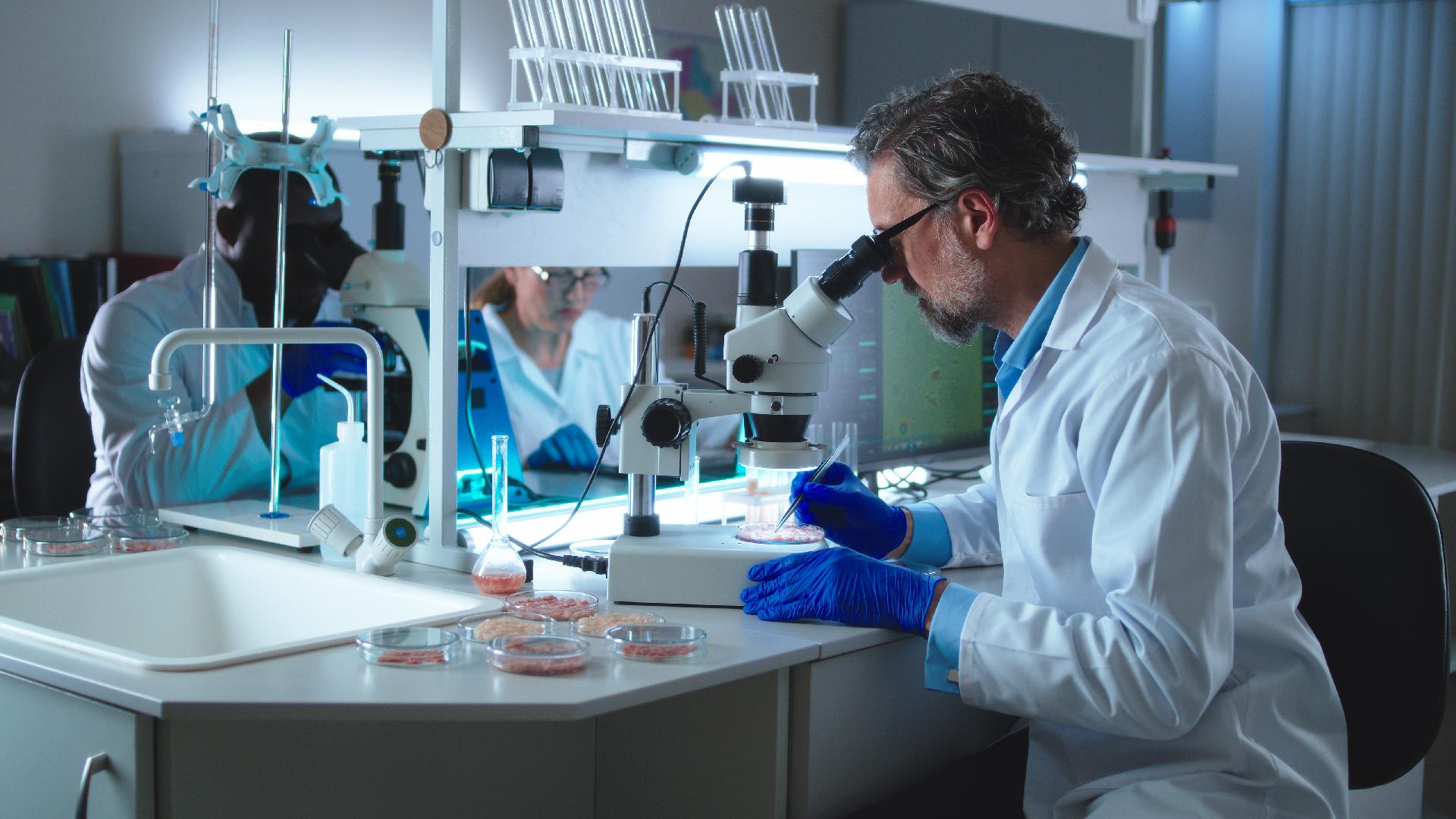 Trends
Trends
4+ MIN
16/02/2023
Por Armando Enriquez de la Fuente Blanquet
What is the technology inside pet food?
A good way to distinguish technology from science and art is through its purpose: Science seeks the truth through scientific methods. Art seeks to reach human feelings, intellectual pleasure, and the beauty of all things. Technology seeks to satisfy human needs and desires, to solve practical problems using, in part, science. Technology can be more broadly defined as entities, both material and immaterial, created by a mental and physical effort to achieve some value. In this usage, technology refers to tools and machines that can be used to solve real-world problems. It's a broad term that can include simple tools, like a crowbar or wooden spoon, or more complex machines, like a space station or a particle accelerator. Tools and machines do not need to be material; virtual technology (such as computer programs and business methods) is also included in this definition of technology. Pet food is the combination of a large number of technologies. If we start from the first contact with a product we buy in the market for our pet, that's the packaging. The packaging today is resistant, transportable, and allows food to be kept in the best conditions so that it preserves the quality and balance of all its nutrients throughout its lifetime. Once we open the packaging (if we are talking about a dry product), we can find croquettes of different shapes, colors, and figures, which are highly digestible for our dog or cat. These croquettes were achieved by an extrusion process, and have high palatability, largely because inside them, there are the ingredients selected to meet quality and safety standards that guarantee the nutrient content. If we go deeper and deeper into that kibble, we see that it contains micronutrients, and they are present in the amount that the dog or cat needs at ppm or mg/kg levels, and sometimes up to ppb or mcg/kg. One of these micronutrients is vitamins. Today, all vitamins are commercially produced in pure forms. Most are produced by chemical synthesis, but some are also isolated from natural sources (like fat-soluble vitamins), while others are produced microbiologically (such as thiamine, riboflavin, folate, pyridoxine, biotin, pantothenic acid, and vitamin B12). In some cases, synthetic vitamins can be significantly more bioavailable than vitamins from natural sources. The chemical stability of some vitamins can be improved by using a more stable chemical form or formulation. For instance, the calcium salt of pantothenic acid is more stable than the free acid form. Similarly, the esters of vitamins A and E (retinyl acetate, tocopheryl acetate) are much more resistant to oxidation than alcohol-free forms. Vitamin preparations can also be coated or encapsulated in a way that excludes oxygen and/or moisture (fig.1), making them more stable. They are often spray-dried or prepared as adsorbates to improve their handling characteristics. Fig.1 Vitamin A microencapsulated or microsphere Once again, technology makes it possible to guarantee the vitamin levels the pet requires in the balanced food eaten every day. However, within the kibble, a series of chemical events can occur that will compromise the life of these vitamins. The presence of trace minerals such as zinc, copper, iron, manganese, iodine, and selenium, in their free state, interact with other nutrients, degrading them or affecting digestibility. These free metals bind to other nutrients, making them unavailable. Generally, the raw materials of the balanced feed provide trace minerals, and it would be enough to prevent deficiencies, but presents variable bioavailability and does not meet the requirement, so it is necessary to supplement the diet with trace minerals that can be from inorganic, organic or hydroxymineral sources. Inorganic trace minerals (sulfates) have a weak ionic bond between the copper ligand and sulfate, as seen in Figure 2. The metal is easily exposed and, as mentioned above, will affect other nutrients. No inorganic or organic trace mineral available today has the same chemical structure, mode of action, or bioavailability. Hydroxy minerals have an OH group that creates a strong, covalent bond with the metal. Covalent bonds have many proven advantages, including bioefficacy and feed stability. Fig.2 Chemical structure of different Cu sources (sulfate, proteinate, and hydroxy) Guaranteeing the nutritional levels of each nutrient requires selecting high-quality ingredients and, in particular, speaking of vitamins and minerals, stable sources. In addition, it is necessary to ensure that the nutrient is present, despite the loss that may occur when going through the thermal process or its interactions with the metals in the diet. I'll take biotin as an example. Although there are variations depending on the reference, biotin doses of 0.6-1.2 mg/kg are recommended in Davenport's work to keep the skin and coat of dogs in good condition. The amounts are very small on the order of ppb, so 2% or 10% commercial products are generally used, which can be in the form of ground products or spray-dried products. A crushed product may contain around 2 million particles per gram of commercial product and a spray-dried product up to 40 million particles per gram of commercial one. Therefore, a product with a larger number of particles improves dispersion. There is one area that I would not want to overlook, and that is that pet food is becoming more and more sustainable. A good example is the use of new sources of omegas, particularly DHA, from marine algae. These sources help reduce the exploitation of marine fishing and, in this way, help conserve ocean biodiversity. As science and knowledge advance, pet food is the result of technological advances by being better every day, being more precise in meeting nutritional requirements, and supporting the health and well-being of our pets in a sustainable way. Author: MVZ. Armando Enríquez de la Fuente Blanquet Source: All Pet Food Magazine
 Formulation
Formulation
5+ MIN
15/02/2023
ADM president: Feed additives market – 2023 and beyond
According Roig, there are 4 main dynamics will affect the 2023 additives market. Global politics 'One factor is global politics,' he explains. 'We have increased tension between large countries, mainly US-China tensions and the upheaval with Ukraine and Russia. This has caused a second factor to emerge, disruption of global value chains and a corresponding increased focus on food security.' Food security Roig notes that the entire global feed industry is re-evaluating which feed product categories are critical to food security and which products should be produced in-country. He notes that as it stands right now, most global production of vitamins and amino acids and fermentation-based feed ingredients are primarily produced in China. Energy security & prices Energy security has also come to the forefront due to rising global political upheaval. Because of this, says Roig, the cost of making feed additives and getting them to market will continue to be high going into 2023. Europe is experiencing natural gas and electricity shortages, and high electricity and energy prices are also now the norm in North America. High fuel costs are also making global transport of ingredients and finished products by sea and land more expensive. 'This is challenging for the industry in terms of margins and pricing,' says Roig. Plant-based protein food A fourth factor is the growth of plant-based protein food products over the last few years, mostly in North America. 'There are many lessons being learned about how to make plant protein foods efficiently, and if cost points come down and if it is scaled up as some expect it to scale, we may see plant protein replacing animal protein at scale in developing countries,' Roig explains. 'There may be a bridge effect in this, a leap-frogging like what happened with phone technology, skipping over landlines and going right to cell phones. Also, the cost curve for making cultured meat is coming down and this may also displace livestock production.' 2022 summary When asked the major issues for the global feed industry in 2022, Roig says that supply has not been too problematic. However, there has been a lowering of demand due to a mix of cost pressures and inflation for consumers. That is, people are eating less meat. Demand for feed ingredients has also been lowered by the decreased production of pigs and poultry due to African swine fever and avian influenza outbreaks in various parts of the world over the last few years. However, Roig says aquaculture has been growing and that will continue to occur. There have been supply chain disruptions for some specific ingredients, but Roig notes that some categories like amino acids have benefited from these disruptions. That is, because of tensions with China, amino acid firms based in other countries have stepped in to fill market needs. Looking forward to 2023 – 4 major levers 'When I look at 2023 and beyond, I think the industry will have to keep a close watch on 4 major levers,' says Roig. Industry structure 'One is whether the industry structure and competitive environment is sustainable. We have seen much consolidation in Europe and China and other parts of the developed world in the compound feed industry (commercial feed) but in the ingredients and pre-mix sector as well. How these industries will scale themselves in this tough environment remains to be seen.' Conversion efficiency The industry must also keep watch on the importance of conversion efficiency. Roig explains that a great deal of progress has been made with increased feed efficiency in developed countries but there is also a lot of opportunity there for further progress. 'If you can get it higher in poultry and aquaculture, the more animal protein will become viable compared to plant-based protein and/or cultured meat,' he says. Consumer demands The feed and livestock industries must also stay aware of the consumer desire for health and wellness – including a desire for less or no antibiotics in livestock production, especially those used for disease prevention and higher production efficiencies. More care must be taken to address livestock health, says Roig, and reduce early-stage mortality. Therefore, Roig foresees health and welfare product categories will see stronger demand – both those that prevent disease like mycotoxin binders and probiotics, particularly in early-stage production, and botanical products that improve digestion, reduce inflammation and increase feed uptake. One example from ADM is their AquaTrax product, based on published peer-reviewed research on Pichia guilliermondii, a novel yeast with demonstrated positive effects on shrimp immune function. Among other findings, multiple in vivo challenge tests involving various pathogens show approximately 80% higher survival rates in shrimp fed P. guilliermondii compared to the control. Sustainability 'Sustainability is also an issue the industry must leverage,' notes Roig. 'People want the least climate impact and water use possible in meat, milk and egg production. Mechanisms to mitigate greenhouse gas emissions in the whole life cycle of the animal are needed. The use of seaweed additives in the diet of ruminants to virtually eliminate methane has been a huge step forward. About a fifth of the world's carbon emissions are from agriculture and most of that is from ruminants. It will continue to be important for livestock farming to prove that it is reducing emissions.' On the ingredient availability side, Roig says shipping rates have calmed down, and production of amino acids and vitamins has resulted outside of China. 'So availability concerns for ingredients are not high,' says Roig. 'The costs are still high but they are on an improvement trend.' Long term outlook Roig predicts that over the next 5 or 10 years, growth rates in the industry will not be what has been expected. 'Consolidation is part of company strategic thinking now, and the realisation that we are in a lower demand environment, as mentioned, will make the industry look at animal health, sustainability and higher conversion efficiency,' he says. There will be growth in animal-based protein (layers and broilers) in Africa, if it is not displaced by plant-based protein, and Roig also expects growth in poultry production in Mexico. 'The other market that will perhaps grow the most is aquaculture and swine in Asia,' he says. 'Those in Asian countries are not willing to move away from animal protein anytime soon. Fish and poultry are the most efficient feed converters, so that's where the growth will be, and they also offer good value proposition for sustainability and animal health.' Environmental impact figures According to a 2013 FAO study, animal agriculture accounts for 7-8 gigatonnes of CO2-eq emissions, or about 15% of the total 50 billion gigatons emitted globally. Global estimates of emissions by species* Source: All About Feed
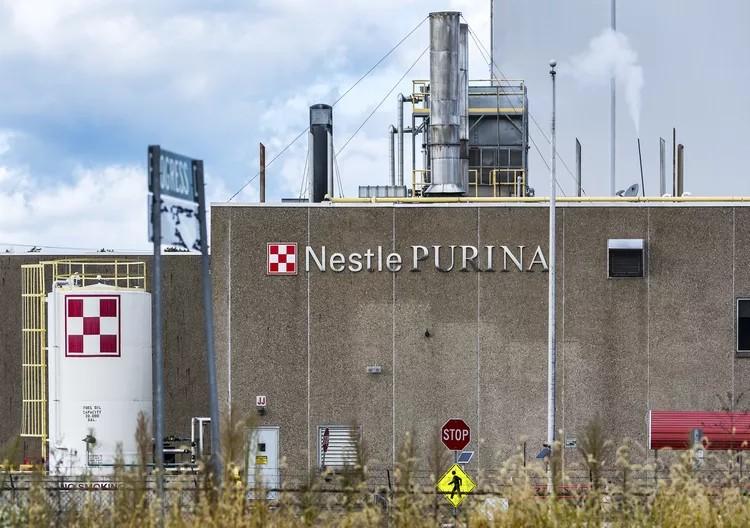 Market Information
Market Information
2+ MIN
14/02/2023
Purina Recalls Dry Dog Food Due To Toxicity Risk
The affected dry dog food, Purina Pro Plan Veterinary Diets EL Elemental (PPVD EL), was distributed throughout the U.S. by prescription only through veterinary clinics, Purina Vet Direct, Purina for Professionals, and retailers with the ability to validate a prescription. Depending on the level of vitamin D and the length of exposure, ingesting too much of this essential nutrient can lead to health issues. Vitamin D toxicity may include vomiting, loss of appetite, increased thirst, increased urination, and excessive drooling to renal (kidney) dysfunction. 'Purina is taking this action after receiving two contacts about two separate confirmed cases of a dog exhibiting signs of vitamin D toxicity after consuming the diet, to date,' a news release states. 'Once taken off the diet, each of these dogs recovered.' Consumers who purchased bags of the product with the UPC Code and Production Codes found here are asked to immediately stop feeding and throw it away in a container where no other animals, including wildlife, can get to it. Pet owners should contact their veterinarian if signs such as weight loss, excessive drooling, vomiting, loss of appetite or increased thirst or urination have occurred in their dog while eating this diet. Note: No other Purina pet care products are affected. 'We apologize to pet owners and veterinarians for any concerns or inconvenience this situation has caused,' the company said in a statement. 'As pet experts and pet owners ourselves, the health and well-being of pets is our top priority.' Consumers should call 1(800) 345-5678 for questions or assistance in getting a refund by Southern Living
 Market Information
Market Information
1+ MIN
13/02/2023
The Latin American pet food market: driving health and sustainability
Additionally, pet owners in Latin America are keen to explore functional health options for their pets in addition to supporting sustainability initiatives. This article explores how the pet food industry in Latin America will evolve by identifying key commercial opportunities. You are invited to read this article on APPETIZER!
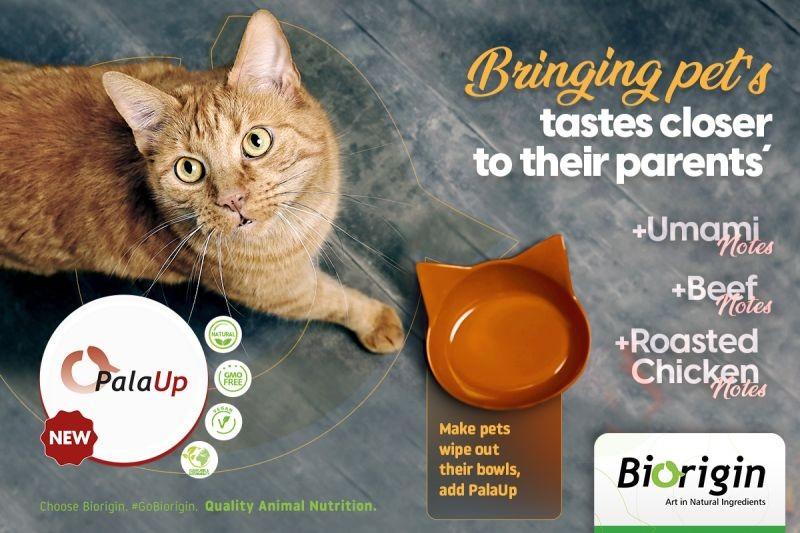 Palatants
Palatants
1+ MIN
10/02/2023
Get Your Pet Food Palatable
The pet feed market shows high growth levels worldwide and, together with the trends that guide this market, such as humanization and segmentation of products, the development and launching of innovative products is essential for companies to stand out on the market.
Biorigin understands this need and, for 15 years, it has been offering natural solutions to meet the market demands and increase the added value of its clients' products.
Thinking about delivering more palatability to pet food, Biorigin brings to the market PalaUp, a new line of yeast-based products developed to enhance the taste of food naturally and add specific flavor notes, such as meat and chicken. For tasty foods, choose Biorigin! Learn more about the benefits of Biorigin's products to improve the health and well-being of pets.
Improve the overall taste of pet food products in a natural way!
Pet owners are becoming increasingly interested in more sustainable and natural claims, but for pets, the taste is everything. Combine both demands with PalaUp yeast extracts and deliver tasty and healthy products to the market.
PalaUp add specific taste notes to your pet food:
• Chicken
• Beef
PalaUp - Coming soon…But you will know 1st!
by Biorigin
 Trends
Trends
4+ MIN
09/02/2023
Por María Candelaria Carbajo
Blockchain, the revolution in data exchange and transparency in food traceability
Technology revolutionizing the market Blockchain is being presented as the solution to track the food system from beginning to end. Much is said these days about market disruption, and along with it, we can name tech innovation. However, when it comes to agricultural technology, few have managed to demonstrate its potential to improve safety, sustainability, and traceability, as Blockchain is proposing now. Although the rise of this technology happened hand in hand with Bitcoin and other cryptocurrencies, it took a short time for companies to notice its potential for other uses and functions. Among them, we may remark on the possibilities and benefits it could bring to the pet and human food industries. But what is Blockchain? In simple words, Blockchain is a shared database that stores information in blocks with fixed storage capacities, linked by cryptography or code. New data forms new blocks, which are linked to the previous one in chronological order. How does Blockchain impact the pet food industry? The truth is that, to this day, we can name different reasons to adopt almost any technology, but if we talk specifically about Blockchain, we can surely number more than one! Indeed, we dare to say its great advantage is that data, once captured in the chain, is unalterable. Currently, many pet food companies are focused on implementing Blockchain technology for agricultural tracking and final product delivery to know all information about the pet food production environment. Some examples are: field-level data mapping, crop data, traceability, sustainability, warehouse receipts, and order payments. Blockchain benefits in food traceability The traceability area is adapting and taking advantage of Blockchain benefits. As of today, we are seeing it being used to handle the volume and complexity of data involved, such as keeping track of supply chain data, origin field, ingredient expiration dates, food safety warranty, and carbon footprint measurements. Currently, it is estimated that 95% of Blockchain applications in development are focused on traceability. The truth is that data ownership and business models based on related data are sensitive topics, surrounded by debates, at least until now. However, the interesting thing about this technology is that the information embodied in Blockchain is immovable and unchangeable. In this technology, as it is a decentralized system, there is no data "owner", as we have conceived the term until now. Otherwise, the property corresponds to everyone and no one at the same time, allowing all people to access the information in the chains. Thus, we could say that everyone is the owner of their own data, which, in turn, is shared freely and transparently. Therefore, we understand that another great Blockchain benefit is the ease it brings to do more efficient, less risky, and less expensive international business. It should be noted that the benefit is mutual: while companies obtain as much knowledge as possible about the history of their raw materials, consumers themselves, who may one day have the possibility of accessing data from the entire chain, could gain in-depth knowledge of where the pet food and their ingredients come from. Due to its ability to collect data chronologically in a chain, and with total transparency, the industry recognizes that Blockchain can be especially beneficial in terms of traceability, not only because of the possibility of knowing the history of all matters and procedures, but also because it offers quantitative models to efficient detection of toxins, dioxins, polychlorinated biphenyls (PCBs), heavy metals, mycotoxins, Salmonella and other pathogenic bacteria. Sampling and automated testing, for example, can control final product contamination and adulteration, while creating a quantifiable record that can feed (and be nourished from) different companies. This way, Blockchain technology application increases ingredient traceability from the raw material to the consumer's plate. In a fragmented industry such as the food supply chain, this technology not only helps store data but keeps track of past quality, which also adds credibility to suppliers. Obstacles in Blockchain adoption Blockchain is a relatively new technology for companies, and because it is in its initial phase, early adopters (those who are the first to implement it) will encounter some obstacles: Investment: interest in technology needs protection regarding investment return, which is nowadays difficult to affirm. Regulation: data protection regulations of each region or country may interfere with Blockchain use and expansion. Standardization: to this day, there is still no global standard for Blockchain use in food value chains. Quality assurance: Blockchain cannot guarantee product safety or quality, but it allows stakeholders to quickly identify problems and bad actors. Scalability: the community continues to face the challenges of growing at scale. Blockchain, a possible path to food traceability digitization As new pet food production technologies create more efficiency opportunities for the entire supply chain, factories could take advantage of accumulated data to make their processes smarter. What matters is that regulated and shared data benefits consumers, at the end of the day, with more competitive pricing strategies and stronger analytical projections that result in better animal health, sustainability, and welfare. Blockchain in food traceability digitization is in its initial stage. However, it hides a great potential for the food and agriculture sectors. Achieving end-to-end supply chain transparency will be a great goal and benefit for all supply chain members. Source: All Pet Food Magazine
 Market Information
Market Information
4+ MIN
03/02/2023
Economic Impact of American Pet Sector Grows to Over $260 Billion
Coral Gables, Fla. – Jan. 2023 – New data has been revealed showing that the pet sector contributed $260.5 billion directly and indirectly to the U.S. economy and accounted for a net contribution to the annual gross domestic product (GDP) of $174.67 billion in 2021. Shared during the Pet Industry Leadership Summit, data from the study, 'The Economics of the U.S. Pet Food and Pet Supply Industry,' demonstrates the strength of pet ownership's economic impact as it grew from $221 billion in 2015. 'Science proves that animal companionship benefits the physical and mental well-being of the American population, and this data shows that pet ownership also supports a healthy U.S. economy,' said Pet Advocacy Network President and CEO Mike Bober. 'This is further evidence for elected officials that it's important to prioritize pet-friendly policies.' The analysis also found that the pet sector supports nearly 2.78 million jobs across the country, with an estimated 1.09 million people working directly in pet related businesses and another 1.68 million jobs linked indirectly to consumer expenditures for pets. 'This industry collaborative study shows the continued growth and importance of the pet sector,' said World Pet Association President Vic Mason. U.S. pet owners spent the most on pet food and treats, which accounted for $50 billion of the $93.95 billion spent directly on pets in 2021. Consumer expenditures on pets also generated public revenues from local, state and federal taxes of $23.4 billion. The study was sponsored by the American Pet Products Association, the Pet Advocacy Network, the Pet Food Institute, the Pet Industry Distributors Association, and the World Pet Association. Conducted by the Center for Economic Analysis at Michigan State University through the Animal Policy Group LLC and Animal Health Economics LLC, the report also sourced pet ownership data from the 2021-2022 APPA National Pet Owners Survey. For the analysis, statistics on animals commonly kept in homes were used. This includes dogs, cats, ferrets, rabbits and small mammals, amphibians and reptiles, birds, and fresh and saltwater fish. Segments factored in as supporting the pet sector included pet sales, pet food manufacturing, veterinary services, pet pharmaceuticals, pet products (e.g., toys, crates, food bowls, leashes, and other products), retail sellers and pet services such as grooming and boarding. Infographic sheets featuring the national data highlights, as well as economic impact data for individual states, can be downloaded at petadvocacy.org/economics. About American Pet Products Association The American Pet Products Association (APPA) is the leading trade association serving the interests of the pet products industry since 1958. APPA membership includes nearly 1,000 pet product manufacturers, their representatives, importers and livestock suppliers representing both large corporations and growing business enterprises. APPA's mission is to promote, develop and advance pet ownership and the pet product industry and to provide the services necessary to help its members prosper. APPA is also proud to grow and support the industry through the following APPA Gives Back initiatives: Pets Add Life (PAL), the Human Animal Bond Research Institute (HABRI), Tony La Russa's Animal Rescue Foundation (ARF) Pets and Vets Program, the Pet Advocacy Network and Pet Care Trust and Pets in the Classroom. Visit AmericanPetProducts.org for more information, and follow us on Facebook, Instagram, LinkedIn, Twitter and YouTube. About Pet Advocacy Network The Pet Advocacy Network connects the experience and expertise of the responsible pet care community to lawmakers and governing bodies, advocating for legislative and regulatory priorities at the local, state, federal and international levels. Since 1971, the organization has worked to promote animal well-being and responsible pet ownership, foster environmental stewardship, and ensure access to healthy pets, including small animals, cats, dogs, fish, reptiles and birds. Our members include retailers, companion animal suppliers, manufacturers, wholesale distributors, manufacturers' representatives, pet hobbyists, and other trade organizations. About Pet Food Institute The Pet Food Institute (PFI) and our members who make the vast majority of all U.S. pet food and treat products, are committed to helping pets enjoy long and healthy lives. PFI provides information about pet food and treat safety nutrition and health to pet owners, and advocates for a transparent, science-based regulatory environment for our members. Visit petfoodinstitute.org to learn more. About Pet Industry Distributors Association Pet Industry Distributors Association (PIDA) is the premier trade association representing the interests of pet product distributors since 1968. The mission of PIDA is to enhance the well-being of the wholesaler-distributor, to promote partnerships with their suppliers and customers and to work cooperatively with other organizations in fostering the human-companion animal bond. PIDA is also proud to grow and support the industry through the following initiatives: the Human Animal Bond Research Institute (HABRI), Pet Advocacy Network and Pet Care Trust and Pets in the Classroom. Visit PIDA.org for more information and follow us on LinkedIn. About World Pet Association Founded in 1950, World Pet Association (WPA) is the pet industry's oldest nonprofit organization. WPA connects and informs pet professionals through industry-defining trade shows SuperZoo and GROOM'D (formerly Atlanta Pet Fair and Conference), as well as WPA365, a robust online community. Through WPA's Good Works program, proceeds from these events are funneled back into key industry organizations and nonprofits with the goal of making it easier for pet industry professionals to do business. WPA's mission is to support the business needs of pet retailers and to promote responsible growth and development of the pet industry by providing thought leadership on consumer and legislative issues; lead efforts in the public sector to inform consumers and ensure safe, healthy lifestyles for all animals; and provide business resources, education, content and services to ensure pet product retailers have the support they need to be competitive. For more information about WPA, its industry events, WPA365 or to become a member, visit www.worldpetassociation.org. Source: https://petadvocacy.org/
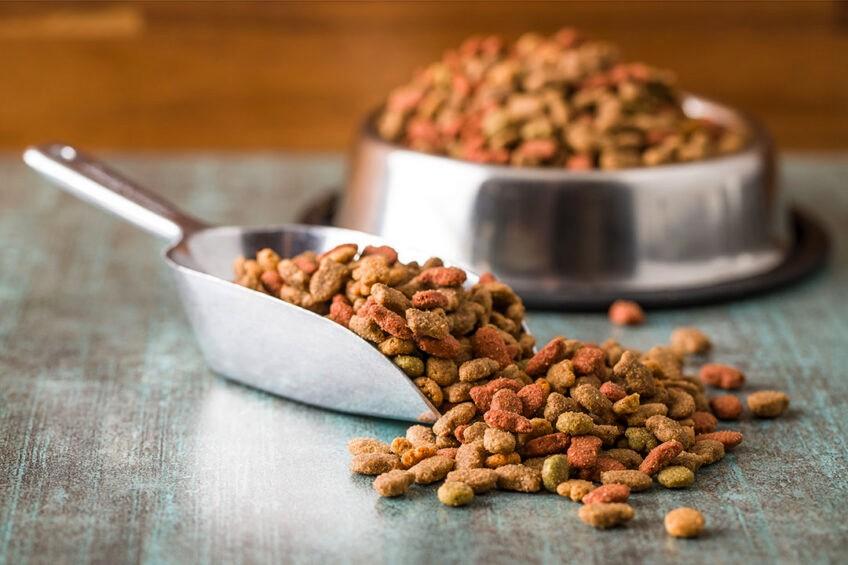 Market Information
Market Information
6+ MIN
01/02/2023
Ukrainian pet food industry – alive and kicking
Rostyslav Vovk, CEO of Kormotech, a family-owned business in the second generation, recalled that the first days after the Russian troops crossed the Ukrainian border were some of the most challenging since the first shock wreaked havoc on the supply chains 'Since February 24, the company's factories in Lviv Oblast, near the Polish border, have only been shut down for one week for security reasons. Back then, we had several weeks' stock of finished products and raw materials which allowed us to maintain our operations; still, logistics were interrupted countrywide,' Vovk said. 'The Russian military severely damaged infrastructure in many parts of Ukraine. Our distributors couldn't transport our products in some regions. But looking back, we can safely say that our partners and local teams coped brilliantly in those conditions,' he added. Shipping to Belarus stopped Since February 24, Kormotech stopped shipping to Belarus, which accounted for nearly 20% of its export sales in 2021 and redistributed the withdrawn volumes among other export destinations. This move has not entailed a drop in sales, which on the contrary, increased by 36% in cash and 14% in volume compared to the same period in 2021. Kormotech has not been exporting anything to Russia since 2014. Re-shaped management structure to face challenges Kormotech has shaped up its management structure to better address the new challenges. 'Our strategic team split into 3 more flexible groups in just one week. The first focused on providing our home market with products and ensuring uninterrupted operations of our facilities in Ukraine and Lithuania; The second – was on strengthening the presence in the export markets, and the third one – was on launching 'Save Pets of Ukraine', a global humanitarian aid for pets suffering from war. We had this experience back in 2014 when the war started. In 2014, when Russia started the war in Donbass and occupied Crimea, we launched an initiative so called 'Don`t leave us in ATO'. We rescued pets suffering from the war. Later we transform this initiative into stable loyalty system of cooperation with volunteers, shelters and NGO.' Vovk said. The humanitarian efforts aimed at protecting pets are much-needed in Ukraine. Over 150,000 cats and dogs need humanitarian aid in Ukraine, according to a survey conducted by the international organisation Four Paws. The exact number of stray animals that lost their parents remains unknown but is believed to be huge. Market shows resilience Despite all the horrors the Ukrainian nation is going through, the country's pet food market demonstrates surprising buoyancy. 'We predict that the pet food market will remain the same in volume as in 2021. A year ago, it equalled 120,000 tonnes in 2021 and was considered one of the fastest growing in the world,' Vovk said, adding that Kormotech's turnover in 2021 was $110 million, 35% up compared to 2020 Currently, almost all pet shops in central and western Ukraine continue operation. The pet food businesses have also managed to bounce back in the east – the territories primarily affected by the hostilities. For instance, in the Kharkiv region, nearly 85% of pet shops maintain operation, Vovk estimated, adding that during the worst period of fights in the region, this figure was close to 40%. Importance of e-commerce The war has also affected customer behaviour, as a growing number of Ukrainians are now opting to making purchases online. 'E-commerce has become more vital for customers. As supermarket sales didn't grow due to infrastructure damage, the client went online, and sales in this channel for Kormotech brands tripled,' Vovk said. 'Importers had some delivery breakdowns due to border queues and infrastructure damage. Local producers located far from the front line coped well in these conditions,' Vovk said, adding that currently, all market players have sorted the logistics issues. Development plans Thanks to the stable domestic market situation, Kormotech has not abandoned its development plans. In 2021, Kormotech was ranked 51st among the world's top 101 companies and the 7th fastest-growing pet food company by the Petfood Industry magazine. 'In 2023, we are willing to be ranked among the top 50 world pet food industry leaders worldwide due to our vision,' Vovk said. 'The Ukrainian pet food market, we predict, will grow, but slower than before. Ukrainians show great humanity and a love for their pets. Many now have switched to pet food due to its convenience. Yet affordability will be one of the key trends, not only in Ukraine,' Vovk said. Every cloud has a silver lining 'For the first time in the history, the Ukrainian [origin of] brands work in favour of the companies. We are not treated as a part of Soviet Union heritage. It's about trust and willingness to cooperate with Ukrainian businesses,' Vovk said. 'It used to take years to win trust and loyalty. Now there is incredible support for our business. European networks are happy to expand the company's range on their shelves, label the product with Ukrainian symbols, and refuse to sell Russian commodities,' he said, adding that the company is currently promoting its brands at European, American, and Asian events. Kormotech joined forces with other pet food sector exporting companies of the 'Ukrainian Pet Alliance'. The United States Agency for International Development (USAID) support the project with funds. The Alliance was to kick off in April officially, but it was launched and presented at the Global Pet Expo (USA) in March. Its main goal is to support Ukrainian pet care brands in the global market. Among its members are the Animal ID, Collar, Harley and Cho, etc. Kormotech has a mentoring role as one of the most successful exporters. 'Regarding future development plans, we are considering launching new facilities worldwide and, in 2023, expanding our current production capacities both in Ukraine and Lithuania,' Vovk said. Currently, Kormotech operates a pet food factory in Lithuania. Vovk said that the facility currently covers 100% of all orders, and the company plans to deepen cooperation with our long-term outsourcing partners from Europe. He added that the company are receiving our orders produced outsourced constantly. Product stocks in warehouses, including those in Europe and America, are constantly replenished. 'We will launch new products, present them in the most prominent exhibitions – same as in 2022, pay taxes, and support our team, especially those who serve the Army Forces of Ukraine. Also, we will continue saving pets suffering from war. Since March 2022, we have delivered over 916 tons of pet food to cats and dogs in need,' Vovk said. 'Today's essential part of our impact is to be the voice of war in our professional network and to involve the world community in supporting Ukraine and its 4-legged friends,' he added. Looking forward to better days Over the past few months, Russia has been increasingly pondering Ukrainian energy infrastructure with missile and drone strikes, causing widespread power outages across the country. This tactic not only leaves millions of citizens without heating during winter but also affects the power supply to industrial operations. Like other businesses, Kormotech ensured to have backup power generation sources to guarantee uninterrupted operations. 'Our Ukrainian facilities are equipped with potent generators allowing us to produce at a maximum capacity of 10 hours (stand alone) if needed – the same as our local suppliers,' Vovk said, adding that when the time comes, everything destroyed or damaged will be restored. 'As a nation, we will have to rebuild infrastructure, institutions, and businesses,' he said. Despite all the challenges, Kormotech, like the rest of the Ukrainian nation, remains optimistic about the future. In a recent opinion poll, when asked if they believe Ukraine will win the war, 98% said yes. 'Resilience is in our DNA. So, we keep doing our job,' Vovk said. by Marieke Ploegmakers - All About Feed
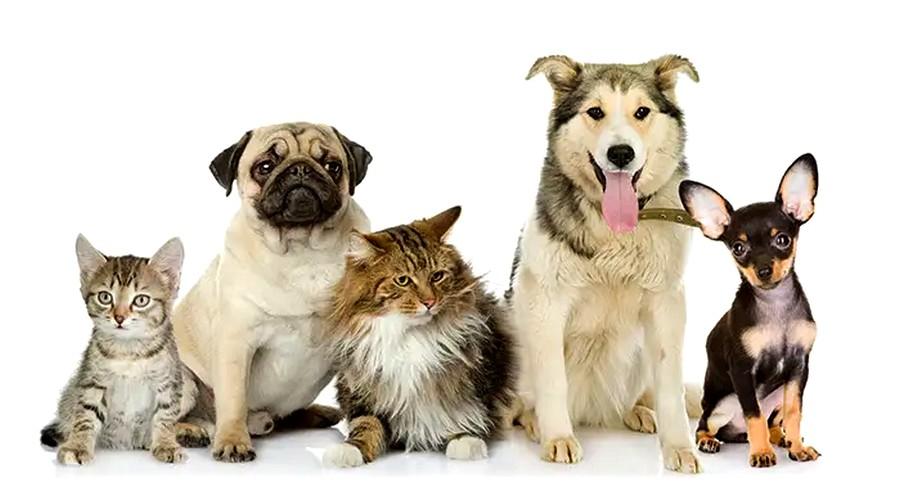 Colorants
Colorants
3+ MIN
30/01/2023
The Pet Food Aisle is Going Natural
This is a bold move, but one that doesn't come as too much of a surprise to those following the industry closely. While total food sales at retail are growing at a modest 2%, according to Nielsen research, total Pet consumables are faring quite a bit better at +5%. The driving force behind growth in pet food and treats is premiumization as pet 'parents', enabled by online information sources, seek to buy what is best for their pet's health. Consumers are trading up to premium offerings. So while the volume of pet food in traditional retail is actually down, in large part because smaller breeds are growing in popularity, category dollars continue to show solid growth. The path to growth in pet appears to be specifically tied to health and wellness. Specifically, consumer desire to avoid 'bad' ingredients is driving growth more than functionality. Both grain-free and now potato-free pet food varieties are increasing share. Wet dog food is growing at more than twice the overall category rate because of a health perception – more protein. But more than any other claim, natural pet foods are appealing to today's pet consumer. Natural color alone is one of the main drivers of growth for dog food. While at Sensient we don't share the view that synthetic color is really less healthful for pets (and neither do pet food regulations), the consumer always has the final say. By de-listing pet brands that don't switch from synthetic to natural, Petco is likely to trigger a wave of conversions to natural colors. And the company indicated a willingness to work closely with brands and natural food color manufacturers in their announcement. 'We're inviting pet food companies to join us on this journey, even working hand-in-hand with some to pursue potential ingredient changes to meet our new ingredient standards' said Nick Kovat, a Chief Merchandising Officer with the company. A few years ago, our innovation team began to develop natural color solutions that could address some of the specific challenges facing pet food and treat manufacturers. Fortunately, there are good solutions available today and more are in development. I would highly recommend checking out some of Gale Myers' previous blog entries as a starting point. Some of the most relevant posts include a review of 'natural Red 40' options and strategies to replace caramel. While I might be a little biased, I firmly believe we have some of the leading natural color technologies available for the pet industry today. Our SupraRed™ heat stable red vegetable juice, for example, is a major advancement in color stability for pet products that go through extrusion or heat processing. This includes most pet foods as well as natural pet treats. Meeting the evolving demands of today's pet consumer means producing nutritious food that also looks like it meets the needs of our furry friends. by Matt Bartoe
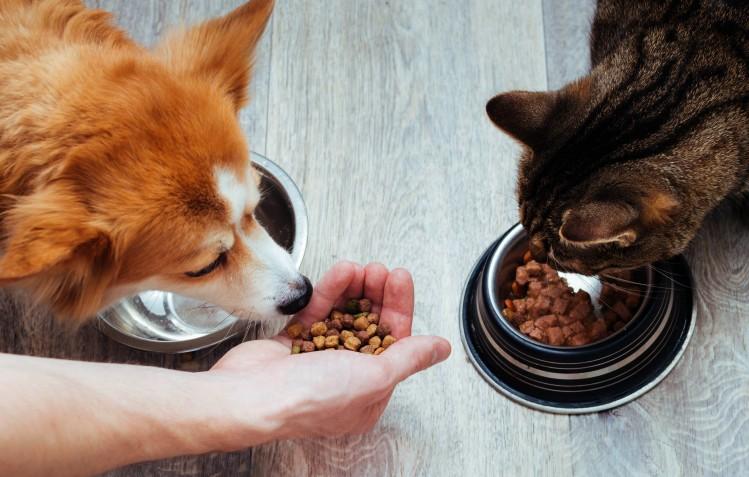 Preservatives
Preservatives
2+ MIN
26/01/2023
APC joins the All Pet Food family
ABOUT APC Our story began in 1981 when APC scientists discovered the powerful role plasma derived functional proteins play in helping support and maintain normal immune function in animals. With a commitment to research and a passion to improve the lives of animals, APC has since grown to become the global leader in the manufacture and sales of blood-derived functional plasma proteins and red blood cell products. Our ingredients are used in animal feed diets and other industries to add value through the unique properties that positively impact billions of animals – and plants – each year. Today APC employs 500+ people in 8 countries with 17 manufacturing facilities worldwide. Our passion to watch animals and plants thrive is at the core of our corporate mission. MODE OF ACTION Inflammation and an overactive immune response to stressors takes a toll on animals. People too – think about how difficult it is to go about your daily routine when you aren't feeling well. The same thing happens with pigs, poultry, companion animals – and even fish! Finding ways to help support a normal immune and inflammatory response isimportant to keeping animals healthy and productive. APC has spent years researching the mode of action of plasma –basically how plasma works. The mode of action of plasma is actually very simple. Plasma is comprised of a complex mixture of functional proteins (we call them FPs for short) that include transferrin, lysozymes, growth factors, cytokines, immunoglobulins and many other components that have a profound, positive impact on animals. Consumed orally, the FPs don't interfere with the body's natural immune response to inflammation, but instead they help the immune system to respond more quickly and efficiently. This helps animals to use their energy for productive functions instead of using it to fight the stressor. FPs help to minimize the effects of stressors and get animals back to normal quickly, effectively and consistently. APC's plasma FPs are formulated with other ingredients nutritionally important to animals to target a specific problem and the appropriate response. Through research and working with our customers, APC fine-tunes the appropriate level of FPs in the diet to help solve the problems caused by common stressors. The result is a fast, visual response in the animal, allowing them to thrive. WORLD PRESENCE With APC you will find high quality products anywhere in the world. Visit APC SHOWCASE in All Pet Food Source: All Pet Food
 Trends
Trends
2+ MIN
25/01/2023
Dr. Eckel and Evonik to cooperate on phytogenics
Dr. Eckel Animal Nutrition has entered into a partnership with Evonik, one of the world leaders in specialty chemicals, effective January 1, 2023. Evonik plans to launch a first product from the partnership – a phytogenic solution developed by Dr. Eckel – in Europe in the first quarter of 2023.
Phytogenics are plant-based feed ingredients which play an important role in sustainable solutions for livestock farming. Dr. Eckel is one of the most experienced and innovative suppliers in the field of phytogenics. The value-orientated family business is one of the world's foremost companies in the sector with a specific focus on animal welfare, developing products that make animal nutrition more resource-efficient, climate-friendly and healthy.
'As a dynamic company with a high pace in product development, we are able to create innovations in a comparatively short period of time,' says Dr. Antje Eckel, founder of Dr. Eckel Animal Nutrition. 'With a strong partner like Evonik, we can allow selected products to access a much wider market in a short time. We are therefore very happy that together with Evonik we can open up new target groups and customers.'
Evonik Gut Health Solutions focus primarily on stabilizing the gut health of animals through probiotics. The partnership with Dr. Eckel will allow Evonik to address further animal health issues with selected products that expand Evonik's portfolio.
"It often needs complex solutions to maintain health and productivity in the barn without antibiotics," says Gaetano Blanda, head of the Animal Nutrition business line at Evonik. 'In combination with our existing Gut Health Solutions, phytogenics will help farmers achieve this goal.'
Source: Feed Planet
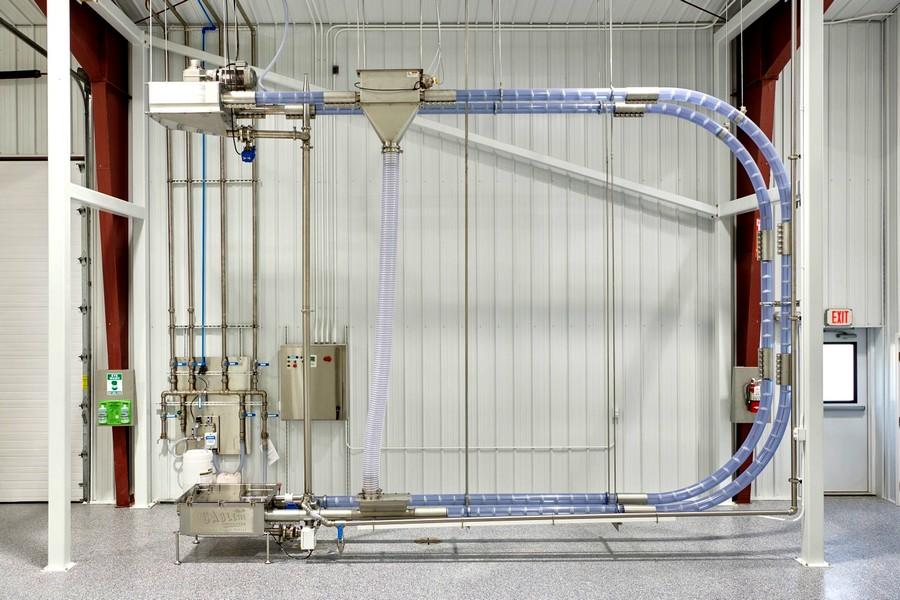 Conveying Systems
Conveying Systems
6+ MIN
24/01/2023
Boost Profit with Gentle Conveying Without Air
To convey such delicate food product, processors should avoid conveyors that may force the fragile material through stressful phases during transport that could impact its integrity, while still meeting high throughput requirements. Given this need, some food processors are reconsidering conveying fragile, high-value products using high-velocity air power through tubes, bends, or sweeps before it is unceremoniously dumped into bins or containers.
In the coffee industry, for example, processors go to great expense to roast whole beans. However, the beans can be damaged by high-velocity air conveyance, compromising flavor and aroma, according to Gary Schliebs, a Process Engineer and Director of Plus One Percent…Engineered Solutions, a consulting firm that works in the food industry and markets food industry conveyor equipment globally.
When a whole macadamia nut is broken, its value can drop by half. Instead of a premium price for whole nuts, damaged nuts are often sold at a substantial discount, and often crushed for use in cooking or processing further upstream in the food industry.
'Many high-value food products can be fragile and need very gentle handling. Otherwise, whole forms can be broken, crushed to bits, and even turned to powder. This significantly lowers the value of the product, and damaged portions may need to be removed or disposed of to prevent perceived quality issues that could prompt customers to turn to other brands,' says Schliebs.
'In some cases, more than 10% of delicate product can be damaged by high-velocity air-power systems. The cost to the industry is compounded because the damage often comes at the end of the process, after considerable value has been added, only to have it degraded by a poor choice in the selection of transfer conveying equipment,' adds Schliebs, who frequently consults on food engineering equipment design, plant layouts, and process flows.
The Limitations of Air Conveyors
A wide range of fragile, high-dollar-value food products can be prone to excess breakage when conveyed at high velocity by airpower, such as in pneumatic and aeromechanical systems.
Pneumatic conveyor systems utilize air by creating air pressure above or below the atmospheric level. These systems use filters that require regular replacement. The two main types of pneumatic conveyors – dilute phase and dense phase – differ by speed and pressure, and both can be configured as a pressure or vacuum system.
In dilute phase conveying, the food product is suspended in the air as it is transported through the conveying pipe at extremely high velocities of typically 3,400-5,000ft/min. While the product usually has minimal breakage during straight pathways, most systems have bends and sweeps where it can be forced through constricted areas, quickly change direction and be damaged. In such cases, high-dollar value food often can be too fragile.
Dense phase pneumatic conveyor systems, where the product is not suspended in air since it is heavy or abrasive, function at lower velocity than dilute phase. However, with air speeds of about 700-1,500ft/min., delicate food items are still susceptible to breakage at bends and sweeps.
While aeromechanical conveyors have a different method of conveyance, these enclosed, high-capacity mechanical systems can also degrade delicate product. With these systems, a wire rope with evenly spaced discs within a tube travels at high speed, running in sprockets at each end of the conveyor. This generates an internal air stream traveling at the same high velocity as the discs that carry product along in the tube. However, these conveyors may also force vulnerable materials through stressful phases during transport, which could impair their integrity.
'Any fragile or friable food product conveyed at high velocity is prone to damage, particularly if it changes direction or exits with impact. This can be the case with both pneumatic or aeromechanical conveyors,' says Schliebs.
A Gentler Approach Boosts Profitability
According to Schliebs, a gentler alternative to protect sensitive, high-value food products is to utilize tubular cable conveyors. These systems move product through a sealed tube using a coated, flexible stainless-steel drag cable pulled through on a loop. Solid circular discs (flights) are attached to the cable, which push the product at low speed through the tube without the use of air, preserving product integrity and minimizing waste.
'Food industry manufacturers can decrease product damage down to 1-2% with a slower process like a Cablevey Conveyors tubular cable system. With it, the product is gently transferred at low speed, so there is minimal to no damage,' says Schliebs.
Cablevey Conveyors is an Oskaloosa, Iowa-based premium, specialty material moving, mechanical conveyor company that has designed, engineered, and serviced enclosed cable and disc tube conveyors for almost 50 years, and is in more than 66 countries.
In the food industry, the conveyors are utilized for products such as nuts, cereal, coffee, snacks, pet food, beans, and seeds. The systems can convey up to 2000 cubic feet per hour (56m3/hr.) of flakes, pellets, shavings, crumbles, granules, regrind, chunks, parts, prills, and powders with numerous layouts using multiple inlets and outlets.
Since the material is carried between the flights, it is also much easier to safely convey some sticky or easily compacted materials in a tubular cable conveyor than in air-powered conveying systems, where such materials can form plugs.
'With pneumatic or aero-mechanical conveying systems, any soft or sticky material, like dried fruit, can smear and adhere to surfaces, particularly at bends and sweeps that change direction, which is not an issue with tubular cable conveyors,' says Schliebs. According to him the tubular cable conveyor's modular construction can also help reduce product damage by enabling it to slide out on a gentler gradient, rather than simply drop out, as is more typical with conveyors utilizing air.
'To minimize product damage, it is important for food industry manufacturers to not only transfer gently, but also get product in and out of the conveyor safely and gently as well. That is more achievable with a conveyor like Cablevey that allows product to slide down rather than drop out the end,' says Schliebs.
In fact, most tubular cable conveyors have interchangeable components that allow the conveyor to be easily expanded or reconfigured to change the length, conveying path and the number of inlets and outlets. These modifications are more complex and time-consuming with a pneumatic conveying system because it has more components and electrical connections
Also, another bonus of the Cablevey systems is that the 'footprint' can be quite small compared to other conveyor systems, and that really helps with tight and compact manufacturing areas.
'Because of the 'bespoke' design of each Cablevey system for customer specific requirements, we can tailor the design to be very 'non- intrusive' in the work area and not hinder access for people and maintenance, as other systems can. This is a real bonus for safety, access and saving floor space, which is another cost to manufacturing,' said Schliebs.
Less energy use, less noise
Since pneumatic systems convey product at high velocity, this typically requires larger, power-hungry motors that run fans, blowers and rotary valves. In a dense phase system, a pressure tank requiring compressed air consumes additional power. In terms of noise level, pneumatic conveying systems also generate considerable noise. Aero-mechanical systems, running at high speed, generate considerable motor and disc noise as well.
Given that smaller motors are used, tubular cable systems are quieter overall and utilize much less energy. 'A low-speed tubular cable system is quiet enough to easily have a conversation around it while it is running,' says Schliebs. 'In regards to energy, it utilizes about one-tenth that of pneumatic systems. For dense phase models, the electricity savings by using a tubular conveyor can be sizeable, with 1-year ROI in some cases.'
by Cablevey Conveyor
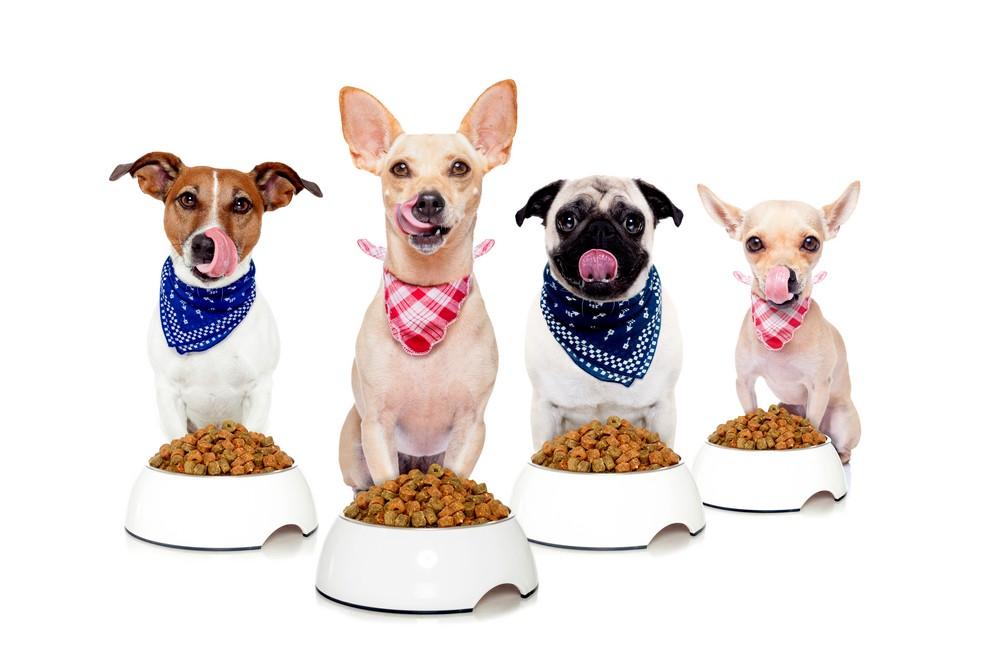 Formulation
Formulation
1+ MIN
23/01/2023
ZOANUGGETS PLUS: Callizo Aromas´new solution for the production of stuffed kibbles for pets.
ZOANUGGETS PLUS is a product made from a fat base with a balance of ingredients that allows it to remain fluid, soft and tasty after the extrusion and drying processes. It comes in Bag in box presentation for 1,000 Kg, and is ready to be injected into the extrusion line. You won't have to deal with in-plant mixing, clumps, or color addition issues; ZOANUGGETS PLUS comes ready from the factory to minimize process times, minimize operator dead time and optimize energy in stuffed Nuggets' manufacturing process. Pets enjoy the experience of different textures in the same stuffed kibble, so it can even be used to make treats with creamy fillings. Through our technical team, CALLIZO AROMAS will come along with you from the very beginning in the implementation of the stuffed material and the fine-tuning of the Nuggets line. Our goal is helping you to produce a winning Nugget with the features you want to get. By: Callizo Aromas Source: All Pet Food
 Colorants
Colorants
2+ MIN
19/01/2023
AstaReal targets pet food market with new collaboration
AstaReal, the global pioneer in astaxanthin production and related research, announces a new strategic partnership with IQI Trusted Pet Food Ingredients, a supplier of premium inclusions. Its recently launched science-based pet food formula NOVASTA EB15 will be available more easily on the European market for the enhancement of animal health. The partnership will combine and maximise the strengths of both companies. AstaReal will provide its health-promoting astaxanthin product NOVASTA EB15, while IQI Trusted Pet Food Ingredients will act as a growth engine for European sales. IQI is based in the Netherlands with a European storage location and sales offices in other countries, and thus can easily deliver to pet food manufacturers all over Europe. 'We are very happy to work with IQI Trusted Pet Food Ingredients, as their team has a large amount of market and customer information, and strategic insight, which enables us to respond quickly to potential customers in this industry,' said Peter Ahlm, Marketing & Sales Manager at AstaReal AB. 'The pet food industry is a huge growth hub for us.' Before expanding into the European market together, AstaReal and IQI previously worked on a successful collaboration in the US. NOVASTA EB15 is AstaReal's latest offering for feed and pet food. Its health-enhancing effects are derived from natural astaxanthin – one of nature's most powerful antioxidants obtained from microalgae Haematococcus pluvialis. Multiple scientific studies show its various benefits for animals, where it improves, for example, endurance and attentiveness, and supports eye health and immune response. In NOVASTA EB15, astaxanthin is encapsulated to maintain its antioxidant power, particularly in challenging formulations. by AstaReal
 Cats
Cats
2+ MIN
17/01/2023
UK to tackle Salmonella risks in raw pet food
All six projects involve academic researchers collaborating with commercial companies and/or government agencies within the human and pet food sectors to establish solutions to common food safety issues. Established in 2022 by the Food Standards Agency (FSA) and Biotechnology and Biological Sciences Research Council (BBSRC), The UK Food Safety Network strives to tackle challenges associated with food safety and prevent food poisoning throughout the United Kingdom. The network brings together various food industries, policymakers, researchers and academics to pursue research and create innovations to protect the country from foodborne illnesses. The raw pet food project involves using bacteriophages to help decrease Salmonella contamination in raw pet food products. According to the Quadram Institute, raw pet foods are growing in popularity throughout the United Kingdom as pet parents seek non-processed diets to improve their pets' health. However, raw pet foods can carry higher risk of contamination compared to their cooked counterparts. To prevent pathogenic contamination, Rob Kingsely, a professor at Quadram Institute, will partner with a raw pet food manufacturer and use funding from the UK Food Safety Research Network to establish a method of reducing Salmonella risks associated with raw formulas. Kingsley will utilize a mixture of bacteriophages, natural killers of bacteria, in the processing of raw pet food diets to safely reduce the occurrence of Salmonella. According to Quadram Institute, if the bacteriophage method shows promise in pet food, the findings could also be applied to other food products. 'We're delighted to be able to support these highly innovative projects and get them off the ground,' said Matt Gilmour, group leader and network director at Quadram Institute. 'As well as ensuring consumers have the safest possible food choices, these projects also support sustainable economic growth and we look forward to seeing the technology they develop being deployed in the next few years.' By Nicole Kerwin
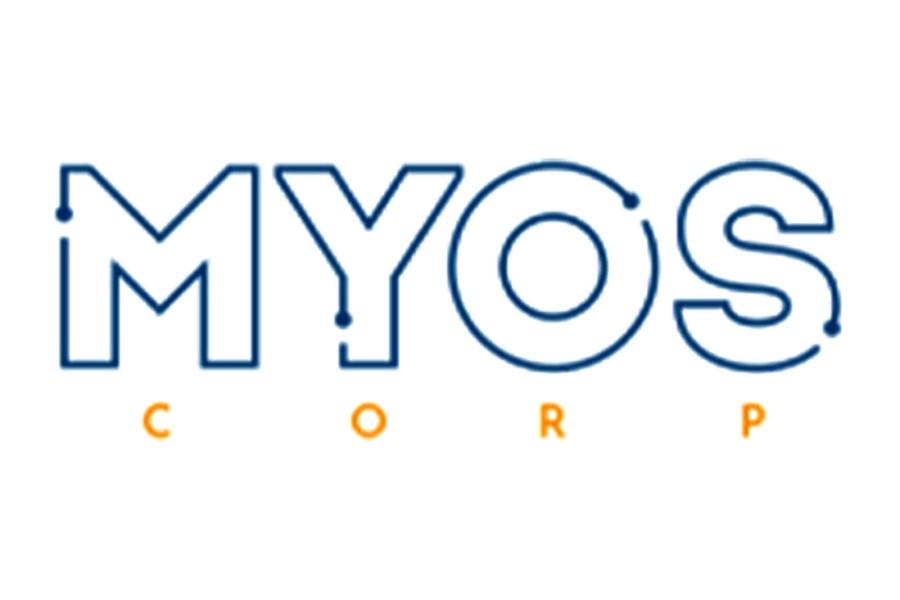 Dogs
Dogs
3+ MIN
16/01/2023
Active ingredient shows promise in managing canine arthritis
MYOS Corp. produces human and pet products that seek to improve muscle health and overall performance. The company's active ingredient Fortetropin has been clinically proven to help increase muscle size, support lean body mass and reduce muscle atrophy. The ingredient is made from fertilized chicken egg yolks and produced using a patented process. Fortetropin is included in MYOS's Yolked® product brand, Canine Muscle Formula® line and Feline Formula. The new, peer-reviewed study was published in the Canadian Veterinary Journal and included 46 dogs. It examines the impact Fortetropin has on overall mobility and quality of life in geriatric dogs with arthritis, as well as the role muscle atrophy plays in the progression of osteoarthritis in dogs. According to MYOS, 95% of dogs, five years old and older, experience osteoarthritis, which can cause pain and lead to decreased mobility. In studies on humans and dogs, Fortetropin has shown to help accelerate muscle tissue gain. 'From a nutritional standpoint, veterinarians address canine osteoarthritis primarily by prescribing the glycosaminoglycans (GAGs), glucosamine hydrochloride and chondroitin sulfate to repair and regenerate cartilage that has been damaged,' said Joseph Mannello, chief executive officer of MYOS. 'We believe that strengthening the quadricep muscles in dogs with osteoarthritis can be a powerful approach to managing canine osteoarthritis. For this reason, Fortetropin supplementation can play a complementary role with glucosamine hydrochloride and chondroitin sulfate supplementation in terms of managing canine osteoarthritis. 'Typically, dogs with osteoarthritis are also managed in part with non-steroidal anti-inflammatory drugs (NSAIDs),' he added. 'Long-term NSAID use is associated with damage to the kidneys and liver. Fortetropin supplementation may enable veterinarians to reduce the dose of NSAIDs needed to manage osteoarthritic dogs.' In the KSU study, half (23) of the dogs received Fortetropin and the other half received a placebo. Dog owners completed a Liverpool Osteoarthritis in Dogs (LOAD) questionnaire that measures general mobility and exercise capabilities in dogs. The study concluded that the dogs fed Fortetropin experienced a 'significant' decrease in LOAD scores, from p=0.0261 at week six to p=0.0040 at week 12. According to the study, the drop in scores indicates the reduced severity of canine osteoarthritis. The placebo group experienced no significant decrease in scores during the same period. 'Osteoarthritis is a painful condition that is very common in geriatric dogs,' said Kenneth R. Harkin, DVM, DACVIM (SAIM), professor and section head, KSU. 'Typically, dogs with osteoarthritis are managed with NSAIDs, but these do not address the muscle loss of geriatric dogs that compounds the loss of mobility with osteoarthritis. These encouraging results with Fortetropin suggest that geriatric dogs with limited mobility may have another option.' Following this latest study, Fortetropin is now back by seven peer-reviewed publications. This study is the fifth of MYOS's randomized, double-blind, placebo-controlled studies, three of which have been completed on humans and two on pets. 'Osteoarthritis in dogs is one of the most common orthopedic conditions seen in veterinary practice,' said Michael H. Jaffe, DVM, MS, CCRP, DACVS, associate professor at Mississippi State University College of Veterinary Medicine. 'Multimodal management, with few surgical options, is the mainstay of its treatment. To combat the ongoing problem of generalized muscle atrophy due to aging and reduced pet mobility, the KSU researchers focused on an aspect of treatment that has largely been minimally addressed. To minimize sarcopenia, and thus improve patient mobility, treatment by reduction of serum myostatin levels with Fortetropin showed promise compared to a nutritionally similar control. 'Based on studies such as this, it is my opinion that use of products that inhibit myostatin levels to reduce sarcopenia, such as Fortetropin, should be considered a valuable component of multimodal management for the treatment of canine osteoarthritis,' he added. Source: Pet Food Processing
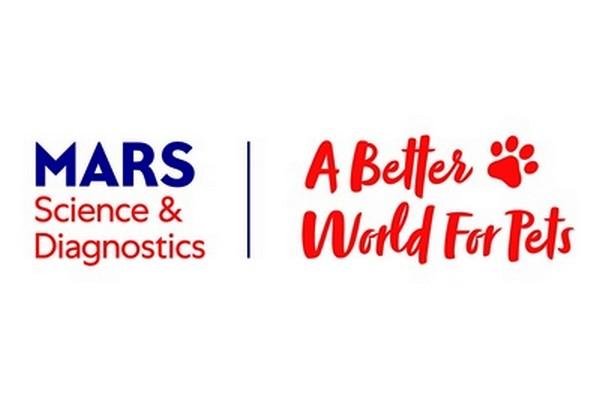 Market Information
Market Information
4+ MIN
13/01/2023
Mars Petcare and the Broad Institute create open-access database of dog and cat genomes to advance preventive pet care
The genome database will power ongoing scientific efforts worldwide and help advance individualized pet health care Insights from this partnership will feed into the MARS PETCARE BIOBANK™, a longitudinal study to understand pet health and disease, transforming pet care for future generations of dogs and cats Mars Petcare Science & Diagnostics President, Nefertiti Greene, hailed the partnership as an "important milestone" and "integral to drive scientific breakthroughs for the future of pet health" Genomes from 10,000 dogs and 10,000 cats enrolled in the MARS PETCARE BIOBANK™ initiative will be sequenced over the next 10 years. Insights from the open access database can help advance individualized pet health care for future generations of dogs and cats. The full genome sequence and variant data of the 20,000 pets will be made publicly available via the National Center for Biotechnology Information (NCBI) Sequence Read Archive, enabling scientific investigation across a range of areas, such as in-depth dog- and cat-breed ancestry, new genetic mutations specific to certain dog and cat breeds and how they link to diseases, as well as pets' aging process. Mars Petcare anticipates releasing the first raw genome sequences as soon as they become available throughout 2023, with additional, processed data to follow as pets are enrolled in the biobank study. Mars Petcare scientists will be analyzing data and publishing initial results for the scientific community throughout 2023 and beyond. Nefertiti Greene, Mars Petcare Science & Diagnostics President, said: "The opportunity to better understand cat and dog genetics through specifically designed gene sequencing studies is an important milestone that will help us deliver on our Purpose: A Better World For Pets. Together with our partners at the Broad Institute we hope to find several key ways to provide clinically focused, real-world data. This is essential for developing more effective precision medicines and that lead to scientific breakthroughs for the future of pet health." By connecting the in-depth genome sequencing data to biological samples, health and lifestyle data from 20,000 dogs and cats in the MARS PETCARE BIOBANK™ study, Mars Petcare aims to find new ways to prevent or predict a wide range of conditions so that veterinary teams can provide tailored solutions to individual pets and improve health outcomes. Jennifer Welser, DVM, DACVO, Chief Medical Officer, Mars Veterinary Health, said: "Our latest initiative with the Broad Institute is hugely exciting when it comes to advancing preventive pet care. This project could help us further understand how we can build individualized pet care solutions for each unique dog or cat, which has the potential to become part of routine healthcare practice. As veterinarians, we're always looking to improve patient outcomes and for new ways to solve some of the most pressing pet healthcare challenges such as obesity, skin conditions, dental disease, infectious and zoonotic diseases, orthopedic disorders and, of course, cancer. I look forward to seeing how the open access data can enable new insights supporting individualized pet health." Sequencing and analysis will be spearheaded by Elinor Karlsson, director of the Vertebrate Genomics Group at Broad Institute and professor of bioinformatics and integrative biology at UMass Chan Medical School. The Broad Institute is a world leader in providing genetic information for biobank projects, creating the databases and tools that have made possible systematic studies of the genetic basis of disease. Prof Elinor Karlsson, Director of the Vertebrate Genomics Group, Broad Institute, said: "We're excited to partner with Mars Petcare to establish an open access resource of full-genome sequences for thousands of pet cats and dogs living in homes across the United States. Making this data fully accessible to the global scientific community will provide new insight into the ancient origins of dogs and cats—who have lived by our sides for thousands of years—and support research projects focused on improving healthcare for pets living today." The MARS PETCARE BIOBANK™ and genome sequencing initiatives are part of Mars Petcare's long-standing commitment to investing in science, technology and innovation. The company has a well-established history in driving transformative pet health innovation through the Waltham Petcare Science Institute, which has focused on pet health for over 50 years; and through Mars Veterinary Health, a network of 2,500 veterinary clinics and Antech diagnostic labs across more than 20 countries. About Mars Petcare Mars Petcare is part of Mars, Incorporated, a family-owned business with more than a century of history making diverse products and offering services for people and the pets people love. Our almost 100,000 Associates across 130 countries are dedicated to one purpose: A BETTER WORLD FOR PETS. With 85 years of experience, our portfolio of almost 50 brands serves the health and nutrition needs of the world's pets – including brands PEDIGREE®, WHISKAS®, ROYAL CANIN®, SHEBA®, CESAR®, GREENIES™, IAMS™ and EUKANUBA™ as well as the WALTHAM Petcare Science Institute which has advanced research in the nutrition and health of pets for over 50 years. Mars Petcare is also a leading veterinary health provider through an international network of more than 2,500 pet hospitals and diagnostic services including AniCura, AntechAsia Veterinary Diagnostics BANFIELD, BLUEPEARL, Linnaeus, Mount Pleasant, VCA, VES, and VSH. We're also active in innovation and technology for pets, with WISDOM PANEL™ genetic health screening and DNA testing for dogs, the WHISTLE™ GPS dog tracker, and LEAP VENTURE STUDIO accelerator and COMPANION FUND™ programs that drive innovation and disruption in the pet care industry. As a family business and guided by our principles, we are building a thriving and inclusive workforce reflective of the many pets and communities we serve, privileged with the flexibility to fight for what we believe in. And we choose to fight for our Purpose: A BETTER WORLD FOR PETS. BY Mars Petcare
 Market Information
Market Information
2+ MIN
12/01/2023
All Pet Food Magazine - First Issue 2023
All Pet Food will continue in the new year with new projects and events in Latin America and the world with the celebration of All Pet Food Day in person at the Hotel Cosmos in Bogotá, Colombia and the first edition of CIPEU 2023 – European Pet Food Industry Congress, to be held in September 2023 in Zaragoza, Spain, in collaboration with Feria Zaragoza. The arrival of winter in the northern hemisphere and summer in the southern hemisphere of the planet is accompanied by new challenges and innovations for our industry and examples of this are shown in the first edition of All Pet Food Magazine in 2023, such as the possibility of production of snacks with 3D printing. This rather futuristic technology can even be composed of novel ingredients, such as proteins from insects and algae. Research suggests that 3D printing has potential for the creation of sustainable pet food and new product development. On the other hand, Blockchain technology comes to light in this edition, which is having a strong impact on the pet food industry, especially in the agricultural supply chain and aims to improve the automation of companies, as well as precision, repeatability , increases productivity, facilitates scalability and reduces waste and human error. Northwind and Schenck Process, two of our clients present topics of great importance for the different processes such as the modernization of the Control System in a factory and the solution of problems of a washing feeder. In addition to other very interesting topics for the industry such as Statec Binder's Flexible Packaging Technology, Famsun's new vacuum coater and Ferraz's worldwide solutions, we have an interview with Marcelo Beraldo da Costa, the new AFB International Director for LATAM, who tells us about the new challenges, growth, innovations and solutions the company will be working on during this year. Undoubtedly, a start of the year that invites us all to daydream about new technologies and solutions for our Industry. We wouldn´t want to end without first thanking all our customers, sponsors and readers who accompany us during all these years, as well as our followers on social media and at the different Events & Congress All Pet Food organizes for the industry globally. Happy 2023 to all! by Iván Marquetti All Pet Food Team
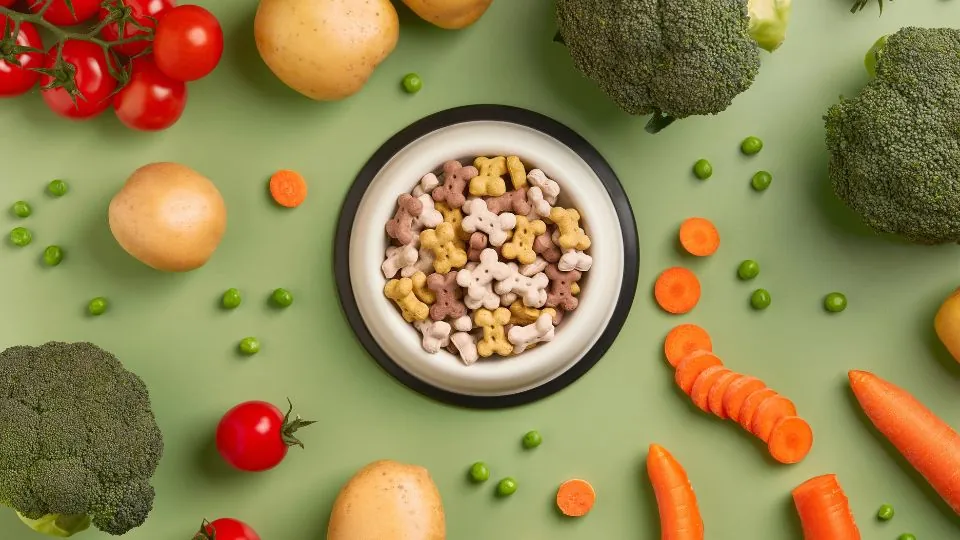 Vegetable Origin
Vegetable Origin
5+ MIN
11/01/2023
Plant-based proteins for more sustainable pet food
According to the latest data, the number of dogs and cats in the world is around 471 and 370 million respectively, however, this population is constantly increasing, especially due to Covid-19 when many people decided to adopt a pet for company. This has resulted in a huge increase of pet food production, with annual worldwide sales currently at 102.6 bn USD. This in turn, also has consequential impacts on the planet. Environmental impact What is the global environmental impact of the pet food industry? To produce dry food for our dogs and cats, around 41-48 million hectares of land (an area twice the size of the UK) is used annually. This is linked to 56–151 million tons of CO2 emissions annually, which represents 1,1% − 2,9% of global agricultural emissions. The main cause of this problem is due to the high amount of meat included in pet food. To produce meat, land is needed for both livestock breeding and for the crops to produce their feed. Moreover, a consistent component of commercial pet food are animal by-products (ABPs). To be in line with the latest human trends, the usage of ABPs will most likely be reduced in the coming years. The decrease of ABPs in pet food would be also important for sustainability reasons. In fact, contrary to the common belief that ABPs are zero-impact ingredients, their use provides a financial return to livestock industry that incentives increased animal production, with negative consequences on the environment. Therefore, to reduce the impacts of ABPs, meat industry can find some alternative and maybe more sustainable uses of them, such as in fertiliser and as biofuel, creating a new balance in the market. Switching to plant-based products Data shows the need to minimise the use of animal proteins and the need to replace these products with more efficient plant-based products which are sustainably grown and harvested. This is not only better for the planet, but also for our pets. According to the review research of Mueller et al. (2016), the most common food allergens causing negative cutaneous reactions in dogs (see figure 1) are beef (34%), dairy products (17%), chicken (15%), lamb (14,5%) and wheat (13%). A similar situation (also figure 1) can be found in cats, where the main food allergens were reported to be beef (18%), fish (17%), chicken (5%), wheat and dairy products (4%) and lamb (3%). To conclude, partly replacing meat and fish products with plant-based ingredients will most likely also help to reduce food-derived allergic reactions in pets. Organic and vegan Taking this all into account, it is not a surprise that we are seeing a huge increase of pet food trends such as; natural, organic, sustainable, vegetarian and vegan. In fact, recent market research (see figure 2) shows that the global organic petfood market value is expected to grow from 4,9 billion USD in 2020 to 9,1 billion USD in 2028. The global vegan pet food market value is expected to grow from 9,6 billion USD in 2020 to 15,6 billion USD by 2028. In the future we also expect more human food trends to influence the pet food market. For example, one currently emerging human trend that could potentially become popular for pets is the flexitarian (or flexible vegetarian) diet. This means reducing, without eliminating, the consumption of meat and animal protein in favour of plant-based proteins. All these trends are starting to increase the demand for alternative, non-animal protein ingredients in pet food. Innovative plant-based proteins Due to the popularity of plant-based ingredients, the percentage of plant-based proteins in pet food formulations has increased. The most used products are traditional ingredients such as; corn gluten meal, vital wheat gluten and soy protein, as well as other options like rice, pea, potato and sunflower. More recently, innovative ingredients like single cell protein and Lemna protein, have started to make an appearance in pet food formulations. Various solutions Since there are several plant-based ingredients currently available on the market, it is important to choose the right product for each application. Below are listed some possible plant-based solutions with their recommended usage in pet food formulations. Rice protein Rice protein is a great ingredient for both wet and dry pet food which is particularly beneficial for hypoallergenic diets and in formulations for puppies and kittens. It is highly digestible, has a balanced amino acids profile and is a source of energy. Pea protein When it comes to grain free, gluten free and hypoallergenic diets, a perfect solution is pea protein. Thanks to its high digestibility and palatability, pea can be used in all kinds of formulations. It also acts a stabilizer, improving the consistency of pet food. Another great solution for hypoallergenic and grain/gluten free diets, is potato protein, characterized by a highly digestible and balanced amino acid profile. Sunflower protein Last but not least, another sustainable and natural protein source is sunflower protein. This protein source can be used in both dry and wet pet food, also acting as a colouring agent. It can be a great solution for grain/gluten free and hypoallergenic diets, it is highly digestible and has a neutral taste that does not create palatability issues. Single cell proteins and Lemna protein In addition to sustainable ingredients, more innovative products have started to appear in the pet food ingredient market, such as single cell proteins or Lemna protein. Single cell proteins are the dried microbial cell or total protein extracted from pure microbial cell culture (algae, bacteria, filamentous fungi, yeast). Due to its origin, it can be successfully used in all kinds of pet food diets, i.e. hypoallergenic, grain free, natural, etc. Water lentils or Lemna protein is highly digestible and palatable, with a high level of antioxidants and minerals, like calcium and phosphorous. Thanks to its omega 3 content, it is also a good solution to improve immunity and skin and coat conditions. Yeast-based protein Yeast products can also be used as sustainable alternative protein sources for animal products. Beside the more traditional brewer's yeast, pet food diets can also be supplemented with other yeast-based products like yeast extract, hydrolysed yeast or autolysed yeast. The benefits of these products are mainly related to the high palatability and digestibility, plus their good content of MOS, β-glucans and nucleotides for a better immunity. As a leading global life science ingredients distributor, Barentz Animal Nutrition can supply all the above-mentioned plant-based proteins and help pet food manufacturers find the right products for their formulations. By barenz Source: PetFood Pro For more information visit https://www.barentz.com/animal-nutrition/pet-food/
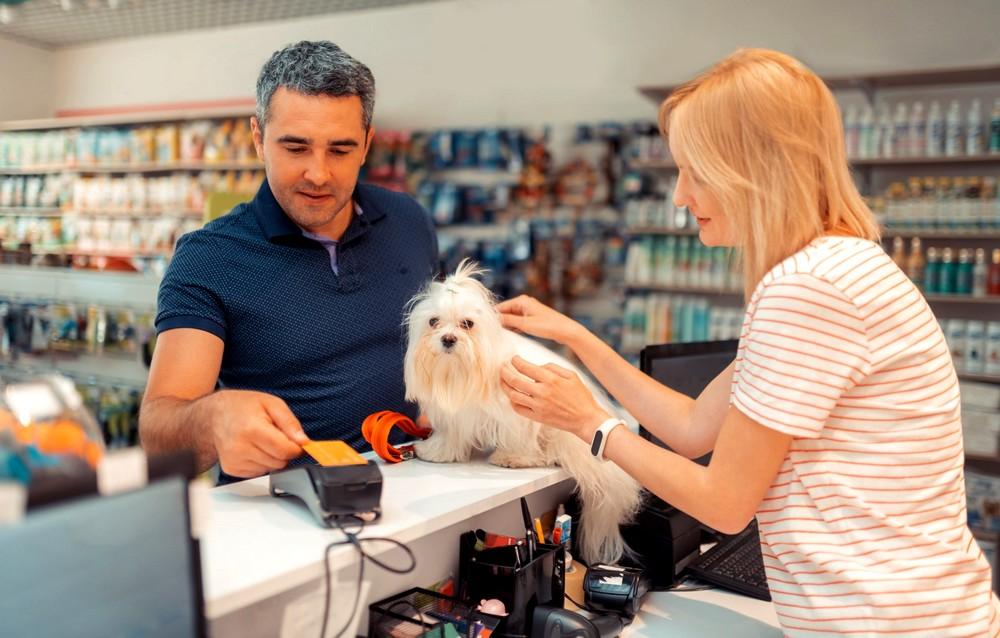 Market Information
Market Information
3+ MIN
09/01/2023
Petflation: 49% of Pet Owners spent More on Pets in 2022
Many Americans became pet 'pawrents' during the COVID-19 pandemic, with 23 million (almost 1 in 5 nationwide) adopting a pet during the pandemic. We surveyed American pet owners to find out just how much they spoil their pets in 2022. Most pet owners (31%) solely have dogs, and just over 1 in 4 (26%) only have cats. One in five American pet owners (21%) have both cats and dogs. The other most popular pets include fish (9%), birds (6%), reptiles (5%), rodents (4%), bunnies/rabbits (2%), and horses (1%). Most (35%) American pet owners have just one pet. Almost one in three pet owners (29%) have two pets, and the remaining have three or more. In fact, 15% have 5 or more pets (we might call that a zoo!). The COVID-19 pandemic afforded many who always wanted a pet the opportunity to get one, with more flexibility at work and the ability to move somewhere more spacious. With lockdowns between March 2020 and December 2020 leaving many Americans lonely, our survey found 28% of pet owners adopted at least one of their pets during this time period. When asked why Americans got their pet or pets, the top reason was for companionship and love (86%), because they always wanted one (40%), for their mental health (39%), and for fun (39%). Nearly one in six (15%) say they were able to get a pet because their lifestyle changed. With great pets comes great responsibility. Americans are taking it seriously – over 1 in 5 American pet owners consider themselves a 'crazy pet parent'. Pet $pending Pets aren't all fun and games – they can also cost a pretty penny. When it comes to necessities, the most common things Americans buy for their pets are food (100%), toys (87%), litter (57%), enrichment (49%), and vitamins/supplements (46%). Other expenses include collars, tags and leashes (38%), costumes and accessories (23%), carriers and crates (14%), insurance (12%) and a care giver, sitter or walker (11%). According to our survey, pet owners spend an average of $109.12 on these necessities per pet every month. That's about $1,309.44 each year – which can quickly add up! Pet owners spend an additional $525.10 every year on veterinary bills per pet. That's almost $2,000 a year per pet on necessities and healthcare! When asked what the top expenses for their pets are, owners say veterinary bills (51%), followed by food (36%), the initial cost of purchasing the pet (5%), medications and vitamins (3%), and grooming (2%). It feels like the cost of everything has gone up – and pet supplies are no exception. Almost half (49%) of pet owners are feeling they've spent more money on their pets in 2022 than in previous years. Pet Insurance Veterinary bills and medicine can be especially expensive for our furry friends. The popularity of pet insurancemay be on the rise, with more and more employers offering pet insurance to employees. While pet owners may be spending more than $525 each year on vet bills per animal, pet insurance can helpsavemoney. Just for the sake of comparison, the average monthly quotefor pet insurance through Insuranks is $25. Assuming this is the coverage that pet owners have, and assuming they're spending about $525 annually on vet bills,insurance would allow a savings of about $225 per animal each year. Currently, 17% of pet owners have pet insurance, and the majority of those with insurance agree that it's worth it. Almost half (45%) say pet insurance has helped cover a procedure or medication they wouldn't have been able to afford otherwise.Of those pet owners who don't have pet insurance, 40% wish they did, and 22% plan to get pet insurance sometime in the future. by Insuranks, All Pet Food
 Palatants
Palatants
1+ MIN
06/01/2023
AFB website – User experience improved!
A primary purpose of AFB's website is to share important information about pet food and palatants with pet professionals. To improve the visitor experience, AFB's digital website platform has recently been enhanced to be more user-friendly, especially when looking for specific information. Visitors can find various technical downloads on palatability-related topics. The papers are designed to be informative for all visitors, including those who are new to the industry as well as those with more experience. AFB's regularly updated blog reports include technical white papers, global tradeshow presentation announcements, and AFB corporate news. And now you can access both our technical downloads and read our blogs on our main website by doing a keyword search. We invite you to check out all the pages on the AFB website – there is more content and numerous improvements not mentioned here for visitors to enjoy. If you have questions or suggestions for digital content, please email AFB at [email protected]. ABOUT AFB INTERNATIONAL by AFB International Source: All Pet Food
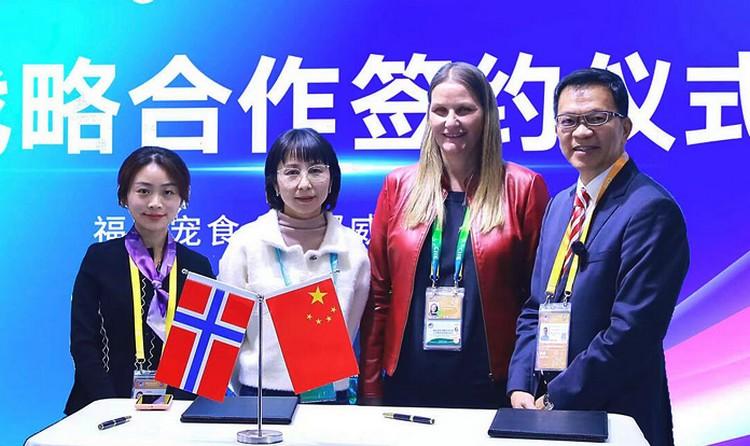 Market Information
Market Information
2+ MIN
05/01/2023
QRILL Pet partners with Chinese pet food brand Fullpet
QRILL Pet has entered into global strategic cooperation with Fullpet Co. and continues its growth efforts in the Chinese pet market. Being one of the largest pet food manufacturers in China, Fullpet is poised for market success and together with QRILL Pet, will continue to explore areas of scientific research, technology, and consumer insight. The partnership will focus on the customization of raw materials, sharing best-in-class practices from both parties to jointly promote the development of pet health food. QRILL PET CONTINUES ITS STRATEGIC GROWTH IN CHINA The agreement was signed during the 5th annual China International Import Expo (CIIE) in Shanghai earlier December 2022. This is the second time QRILL Pet and Fullpet Co. signed an agreement, the first time the brands entered into a partnership was during the 4th CIIE event in 2021. At the moment, Fullpet utilizes QRILL in its tailor-made pet staple foods, which not only effectively improved the nutritional value and functional performance of pet food but also won the recognition and support of consumers in China. China is the world's largest market for marine ingredients and it is an important strategic growth area for QRILL Pet (and Aker BioMarine). One of the key factors for the brand's development in the Chinese market is having a local team that consists of well-experienced professionals within the pet food industry in the region. 'China is an extremely fast developing pet food market and we are already making strides with Fullpet Co.,' said Matts Johansen, CEO, Aker BioMarine. 'We are much more than an ingredient supplier. We are a collaborative partner who brings valuable insights, introduces new market opportunities, and guides our customers for growth and product expansion across all aspects of the supply chain, even down to marketing.' Johansen added: 'By strengthening this strategic partnership and heavily focusing on research, sustainability, technology and consumer insights, we can ensure success in the Chinese market and together we will continue to upgrade pet health food in China' 'In the past year, we formed an incredible partnership with Aker BioMarine, recognizing not only the quality of their ingredients but the quality attitude of their team members,' said Zheng Zhen, the deputy general manager of Fullpet Co. 'This level of excellence coincides with the outlook and expectations of Fullpet. Aker BioMarine has complete control of its supply chain and full competency when it comes to product development and promotion. We look forward to continuing our work with Aker BioMarine to improve the health of pets in the field of exploration.' by Qrill Pet
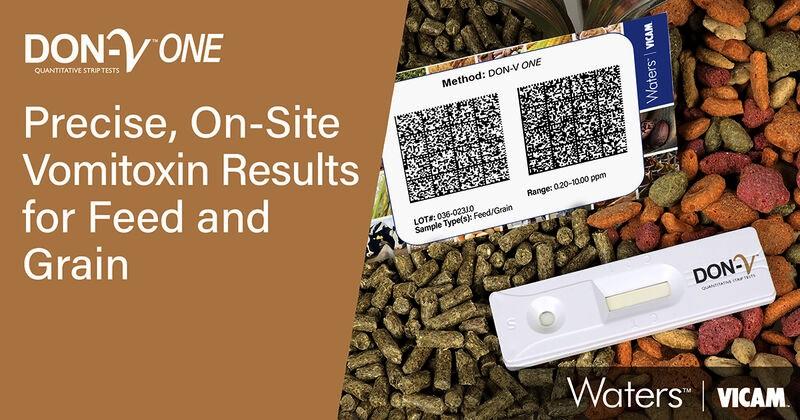 Laboratory
Laboratory
1+ MIN
04/01/2023
DON-V™ ONE - The World's FIRST fully quantitative lateral flow strip test for vomitoxin (DON) in finished feed formulations - including pet foods!
DON-V™ ONE offers the world's first lateral flow strip test capable of measuring vomitoxin (DON) in complete feeds and pet foods. Using a simple, barcode-based universal calibration, DON-V ONE delivers numeric results in minutes while improving safety and sustainability for field, process and laboratory testing environments. DON-V ONE eliminates high-stakes calibration, reduces time to result and offers unmatched performance for DON monitoring in finished feeds
Benefits
Safe – Eliminates toxic calibration chemicals
Value – No hidden costs or sample batching required
Fast screening – Actionable results in 5 minutes*
Sensitive – Limits of detection as low as 0.20 ppm
Wide range – 0.20 to 40 ppm†
Convenient – Easily performed on-site or in the lab
Accurate – Results equivalent to HPLC methods
*after extraction † Using high range procedure
This procedure has been validated for a wide range of finished feeds, including pet food
by Vicam
Source: All Pet Food
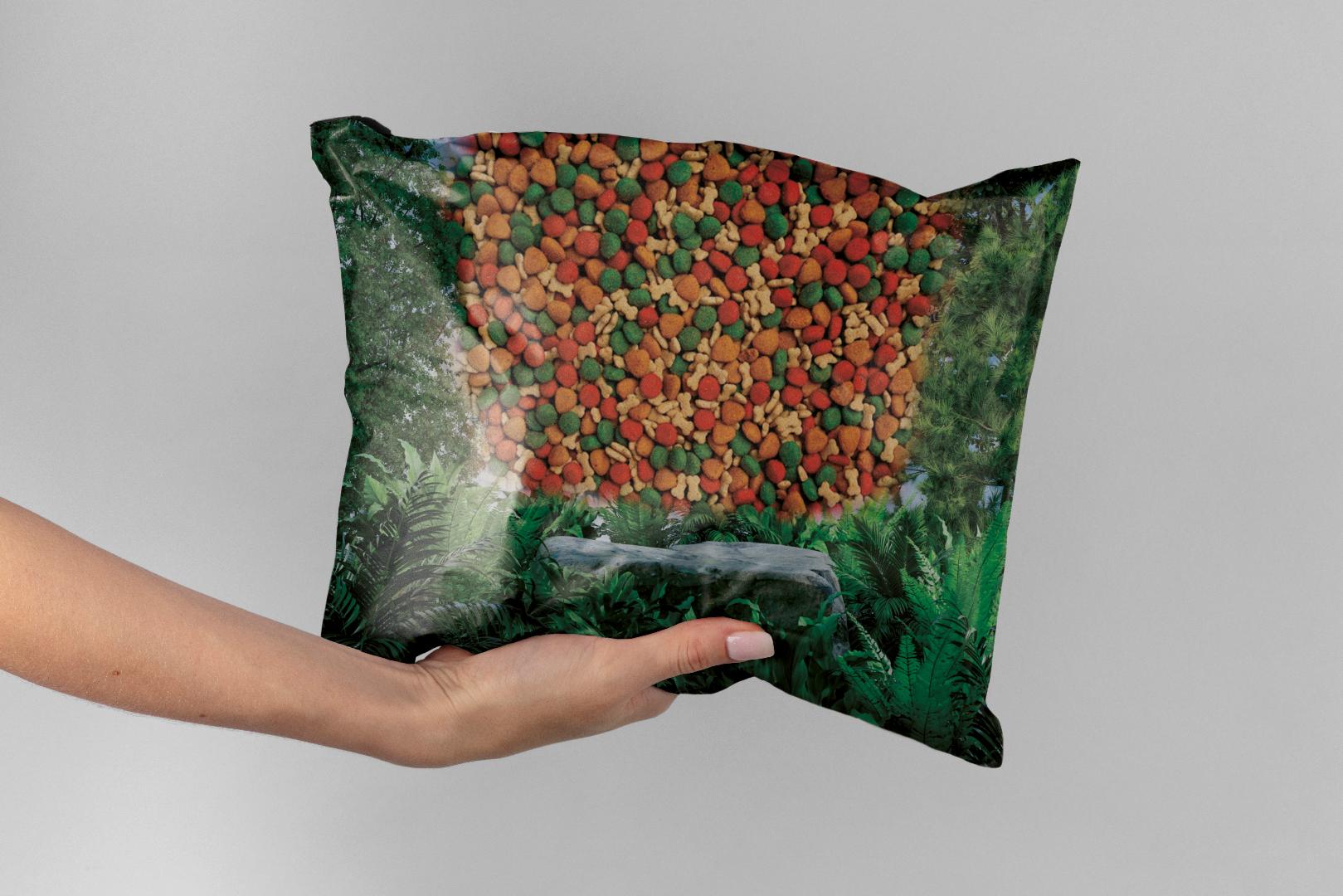 Packaging
Packaging
2+ MIN
03/01/2023
Special and nature-friendly packaging
Innovation, technology, quality, sustainability, and safety are the stars of its developments, where its main activity occurs in the Latin American and Brazilian pet food segments. Its product line includes the flat bottom Box Pouch, Stand up Pouch, Shape Pouch, and 4 seal formats. The main benefits of Soulpack packaging are: Its modern design, which enhances the product. Closure with Zipper or Velcro Ⓡ, which maintains food properties. Easy opening system that cuts straight. Handle to facilitate transportation. The pet food industry is a fast-growing segment, as is the change in pets' eating habits and their owners' behaviors. Soulpack invests in technology to accompany the market and maintain packaging efficiency and performance, but it does not stop thinking about its commitment to nature. Therefore, seeking excellence in packaging combined with sustainability is essential. Its processes are designed to avoid negative impacts on the environment. All development stages respect that value, from the correct usage of natural resources to the production inputs disposal. Soulpack's environmental management allows it to produce various packaging types with conscious resource usage. "We believe that sustainability is the future and, for this reason, we also have environmental initiatives through our packaging," says R&D Manager, Emerson Silva. Committed to this value, we have developed two new packages, presented at CIPAL 2022: 100% recyclable packaging with a high barrier Structure: PE + PE / Monomaterial Characteristics: High barrier against grease, humidity, and oxygen. Use: Human and animal food Format: Box Pouch, Stand-Up Pouch, 4 seals, and others Printing: flexography and gravure Accessories: laser cutting guide, internal zipper, front zipper, velcro, and others. Biodegradable packaging Structure: PE, PET, BOPP, KRAFT PAPER, and others Characteristics: Biodegradable containers, with technology that accelerates degradation converting the containers into humus for use in agriculture or in biogas to generate energy (according to ASTM 5511). Use: Human and animal food Format: Box Pouch, Stand-Up Pouch, and others Accessories: Laser cutting guide, internal zipper, front zipper, and others. Soulpack is proud to be a supplier of great clients that work to guarantee nutritious, formulated food to maintain animals' health and well-being. Contact us to find out more about Soulpack's special packaging, by WEB or EMAIL by Soulpack Source: All Pet Food
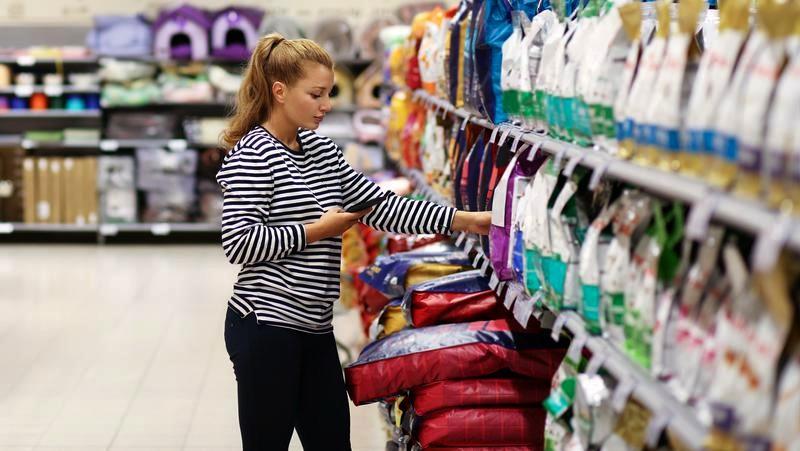 Formulation
Formulation
4+ MIN
02/01/2023
Dramatic changes to pet food labels proposed by AAFCO
Well, there is good news on this front! The Association of American Feed Control Officials (AAFCO) published their proposed changes to pet food labels recently and the public comment period ended on October 31st. These new changes have been in the works since before 2018 and, if approved, would be added to the AAFCO model regulations, which are published yearly. These changes even after approval wouldn't be implemented immediately – manufacturers would likely have several years to get in full compliance. However, as they have been in the works for so long, it's likely that many manufacturers are anticipating the changes and so, if approved, we could start seeing new labels come out relatively soon after the final guidelines are published (which could be as soon as 2023 or 2024). With the caveat that these are just proposed changes, here are some of the highlights: 1- The Guaranteed Analysis will be replaced with a white box called 'Pet Nutrition Facts' that is designed to look like the 'Nutrition Facts' box on human foods. This box will include the calories per cup or can or other common unit, how many calories come from protein, fat, and carbohydrate, and the amounts of protein, fat, fiber, and moisture plus any additional nutrients that the manufacturer wants to highlight. There will be variations for different size packages, but the example below would be similar to what would be seen on most dry food packages.While I'm all for additional information and a more standardized format, the proposal to provide nutrient concentrations based on cups or cans or other volume units is really frustrating as comparing the amounts of nutrients between 1 cup of two different dry foods, or between 1 cup of dry food and a can of wet food will be useless if the foods provide different amounts of calories in that same volume unit! In previous posts, we've explained why the best way to compare nutrients between foods is on a calorie or energy basis, and these new labels are an opportunity to 'do it right' that AAFCO seems to be ignoring. AAFCO mockup from 2018. Since then, the 'intended use' line has been removed, but the rest is similar in the latest proposal 2- More clarity on nutritional adequacy. We're discussed 'AAFCO statements' or 'nutritional adequacy statements' before – they are the one item on a pet food label that lets you know whether the food contains all essential nutrients for a particular life stage of a pet. Instead of playing hide and seek with the statement on a large bag full of marketing or in micro print on a small can, it has been proposed that manufacturers will include specific icons on the front of the package to make it clear from a glance whether a product is complete and balanced and for what life stages it is appropriate. If a diet isn't nutritionally complete, such as a treat or a food topper or mixer, this will also be clearly stated. This is a very welcome change as there are a number of diets currently on the market that are not nutritionally balanced, but are labeled in a way that can mislead consumers into thinking that they are balanced. 3- Fiber concentrations on the new label will reflect total dietary fiber, like on human foods, rather than crude fiber. This really excites nutrition nerds like me because crude fiber measurements include less than half of the fiber in some foods, so it is a poor choice to use to compare foods and nutritionists have been complaining about crude fiber for years! Total dietary fiber is a much more accurate measurement of the fiber in a diet. 4- Changes in rules for large breed puppy diets that have undergone feeding trials. Currently, diets that are labeled as being appropriate for large breed puppies (over 70 lb adult weight as defined previously by AAFCO) can either be 'formulated to meet' the AAFCO nutrient profiles for large breed puppies, which put an additional limitation on the calcium concentration compared to diets for smaller puppies, or they can complete a feeding trial. However, that feeding trial is not currently required to be in large breed puppies nor is the calcium required to be limited as in diets that are 'formulated to meet' for large breeds. The new proposed regulations will close that loophole by giving manufacturers the choice of doing a feeding trial in large breed puppies, or doing a feeding trial in smaller puppies but meeting the calcium guidelines in the AAFCO nutrient profiles for large breed growth. While I'd prefer a requirement to use large breed puppies in feeding trials for large breed puppy diets, this change will be an improvement from the current regulations. 5- Instructions for safe handling. Packages will now require the safe handling instructions to be included, which could be in the form of standardized icons for how to store the food, such as to keep frozen or refrigerated, keep in a cool, dry place, etc. Proposed safe handling instruction icons, AAFCO 2022 While these proposed changes aren't perfect, they address a number of the issues that my colleagues and I have had with the current labels for many years. The biggest remaining issue is the current plan to have the Pet Nutrition Facts boxes report nutrients based on volume measurements rather than calories. I know that many colleagues submitted complaints about this specific proposal, so fingers crossed that AAFCO will reconsider this plan. We'll keep you posted! by Cailin R. Heinze, VMD, MS, DACVIM (Nutrition)
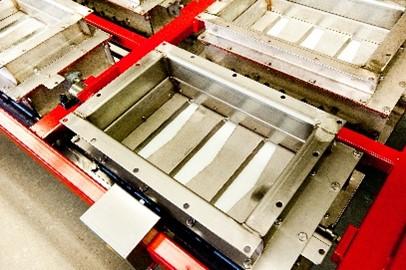 Dosing
Dosing
5+ MIN
30/12/2022
Dosing slide vs. screw feeder
It is a challenge to find the most optimal solution for the silo discharge system within a specific process installation. In many cases, it is a question weighing up a dosing slide against a screw feeder. To make a responsible choice, insight into the operation and qualities of both the dosing slide and the screw feeder is required. Activation The dosing slide consists of a fixed upper lower grid and an upper grid that moves back and forth during the dosing process. This ensures that the product in the silo is loosened by means of a product-friendly activation. The dosing slide moves the product without transporting it. This means that the product flows straight in a vertical direction, by use of gravity. In contrast to a screw feeder (in which the material is extruded in one direction), no energy is supplied which means no product damage or compaction occurs. The simple design of the dosing slide makes it a particularly durable discharge system. A dosing slide can be in operation for decades. Mass flow The discharge system determines, to a certain extent, the silo's geometry and therefore also the flow image of the product inside the silo. It prefers to not place the discharge system in the middle of the silo funnel, to reduce the risk of product bridging in the silo. A dosing slide generally offers a much larger discharge surface than a screw feeder. The screw feeder's discharge surface is determined by the relatively small diameter and length of the screw itself. The larger discharge surface of the dosing slide ensures an equal discharge flow where mass flow occurs in the silo (the FIFO principle). For a given storage capacity (in case of an equal funnel triangle), less building height is also required. Dosing range An important feature of the dosing slide is the enormous dynamic flow range. The ratio between the minimum and maximum flow rate is easily 1:1000 (from grams to kilograms per second), with a dosing accuracy of approximately 2 grams. With a screw feeder, the dynamic flow range is no better than 1:20. An increase in speed not only translates into an increase in capacity, but also into an increase in slippage. It is true that placing a second screw under the main screw reduces the flow to, for example, 1 % of the maximum flow, however, the investment costs for materials and especially the control system will strongly increase. In addition, starting a pull-out screw at low speed requires an extra strong motor with a frequency controller. This extra power is necessary I order to provide the breakaway torque. This requirement does not apply to a dosing slide. Dosage precision With a dosing slide, minimum dosage quantities approach 0 grams; with a dosing screw, this quantity is determined by the volume in one turn of the screw. Once the dosing screw's discharge opens a screw compartment, this compartment flows out completely. In addition, there is the risk of the product's continuing to flow (primarily if the product has the tendency to become fluid). It is, of course, possible to install a shut-off after the dosing screw for more precise dosages, but the next dosage then amounts to at least that quantity of material that the shut-off held back. By contrast, a dosing slide closes immediately and completely. The dynamic flow range results in the dosing slide's being able to provide both rapid and precise dosing. With a dosing slide/scale combination, the limiting factor to precise dosage is the scale, not the dosing slide. For this, a weigher-in-weigher can be helpful. This offers the possibility of dosing both 50 g and 100 kg from the same silo in a single batch weighing system with the precision of a few grams within flow ranges up to 5 kg. Controls A dosing slide requires a greater investment than a dosing screw, but with the deployment of six or more dosing slides under a silo block, it is cheaper than using six dosing screws with shut-offs. This is because dosing slides (whether this be 4, 6 or even 24 dosing slides) are all powered by one single hydraulic cylinder. This single cylinder activates a framework to which the dosing slides can be linked at will. The power consumption of a dosing slide is extremely low. For example, it is possible to dose up to 50 kg/second with a 3 kW motor. For this same amount of effort, a dosing screw requires at least a 25 kW motor. Furthermore, every dosing screw requires its own power unit and frequency controller. Discharge characteristics The controls for a dosing slide are more intelligent and, consequently, more complex than those of a dosing screw (for a screw, flow is proportional to RPM, within certain limits). A dosing slide, however, allows for variation in the percentage of opening, stroke length and frequency. For certain applications, the shape of the vanes can also be adjusted (more or fewer progressive openings). This allows the achievement of optimum discharge properties for the material to be dosed. Image 1: Dosing slides have a fixed lower grid and upper grid that moves back and forth during the dosing process. Image 2: A platform of dosing slides is operated by a single drive motor. Image 3: A dosing slide in operation. About KSE Partner in optimizing production processes Increasing complexity forms the biggest challenge for animal nutrition manufacturers; more recipes, a growing number of ingredients, additions that are difficult to dose and higher quality standards contribute to this trend. For over 50 years, KSE has been supplying future proof solutions to stay ahead of the trend in the form of modular machinery and smart software that fit together perfectly. We create flexible processing solutions that enable a responsive production process. Automation, accuracy and contamination control are at the basis of our future-proof innovations. Our aim is to not only improve the production process, but also to make a significant contribution to increasing margins and achieving targets. Together we create the solutions with the best results! For more information about KSE click HERE. By KSE Source: All Pet Food
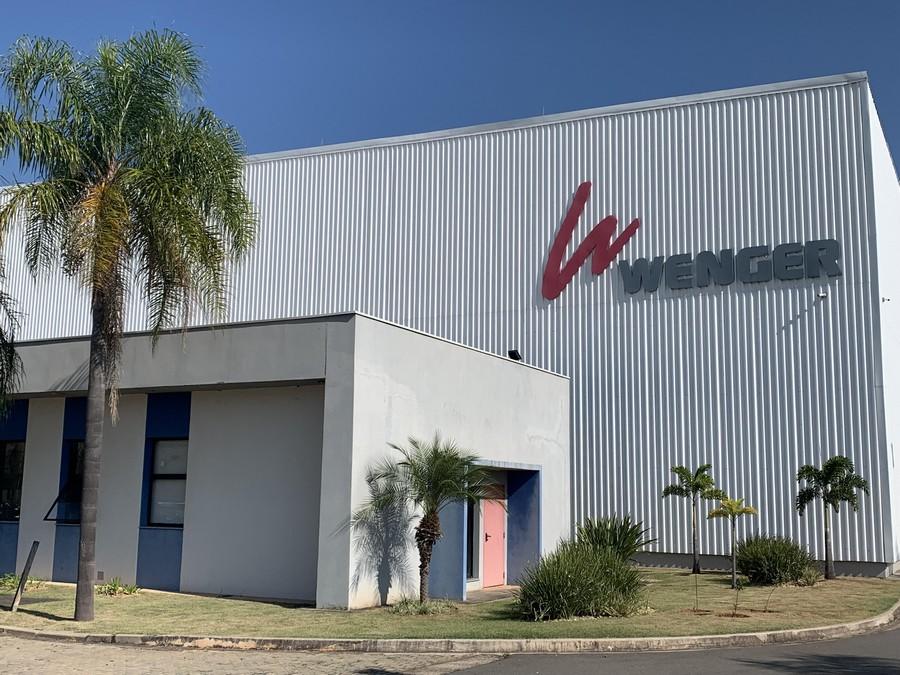 Market Information
Market Information
4+ MIN
29/12/2022
Wenger Manufacturing Brazil – A model facility in Latin America
Very early in the morning, Claudio Mathias, Global Director of Sales and Strategy of Maverick – A division of Wenger, picked us up at the hotel located in the Center of Campinas, São Paulo and took us to visit the impressive plant that Wenger and Maverick develop in Brazil, which is worthy of admiration and an example for the whole region. Although this plant takes place in Brazil, its production covers the entire Latin American region, and even on occasion, it takes care of several orders for equipment intended for the European and Asian markets, a topic that will develop later in this article . Upon arrival at the plant, Claudio kindly introduced us to Glauber Rodriguez, Director of the faclity and in charge of all manufacturing details of parts and equipments previously commissioned by different companies that bet on such refined quality of equipments. Once we stepped in the facility we could appreciate the different offices with the personnel in charge of the design of the spare parts, Stock, purchase of raw materials, system department, among other sectors. We sat down and statart a very friendly conversation with Claudio and Glauber, who provide us such important details of both companies, their history and work policy, something inherited from the Wenger brothers more than 75 years after the Company foundation. The quality, love, professionalism and passion in everything they do comes to light when both Glauber and Claudio tell us how the plant facility and how its production have been growing every year. Although the plant was inaugurated in 2016, since 2019, just at the light of the pandemic that hit the planet, the production of pet food grew and, therefore, the production of equipments and the export of complete lines, not only to the countries of the region, but also to Europe and Asia, due to the high demand the company has in its facility plant from Sabetha Kansas, USA. Something that caught our attention, in addition to the high level of professionalism, is the implementation of Sustainability within the company's strategy, which is reflected in the purchase of regional components of very high quality that allows the design and production of equipment. with higher levels of energy savings. Production area We couldn't help but be amazed at the cleanliness and level of detail that permeated the 10,000 m2 production area, where we could appreciate the focus and passion with which the plant's engineers and experts worked. The spare parts were arranged in such a way that it was impossible not to distinguish each one of them. It help us to check the quality of the steel and the final product. Glauber and Claudio showed us the production of Wenger Horizontal Extruders and Dryers, as well as Maverick Extruders, previously commissioned by various pet food companies. Maverick's proposal is to offer the market a line of standard or modified equipment, keeping the principles of integrity, reliability and quality of Wenger equipment, but with greater flexibility. The plant not only manufactures equipment and complete lines of pet food, it also produces equipment for aquaculture and human food, although due to the great growth of the Pet industry in recent years, its production represents 70%. According to Glauber, the 84% of pet food manufacturers worldwide own at least one Wenger piece of equipment. To say Wenger or Maverick is to say quality, efficiency and sustainability and that´s why Marel company recently didn´t hesitate to acquire Wenger Manufacturing LLC., including all the main commercial activities of the group. According to the company's statement, it was acquired for USD 540 million, although it was agreed to continue the Wenger legacy and its significant impact on the community, as well as Marel shares for Wenger employees. Marel sees great opportunities and is committed to investing in the combined business to accelerate growth. The acquisition is expected to improve margins and profits. Planned initiatives include expanding manufacturing capacity to meet high demand in Wenger's core markets. We say goodbye to Glauber, Claudio and the entire team with the satisfaction the Industry counts with a production facility in Latin America for the manufacturing of pet Food equipments of the highest quality, which also has compliance with the highest processing and quality standards that any country of the so-called first world could sign. A pride for our industry that continues to grow steadily, with alliances with Universities and Research Institutes, to achieve the level of excellence in the production of balanced feed in general, and contribute to the nutrition of the different animal species. Congratulations and Success in the future now hand in hand with Marel, which we´re pretty sure will be able to provide a better service globally, expanding its projects and solutions for the entire feed & food industry and contributing to a great development in terms of energy efficiency, processing and nutrition. Congratulations and all the best for this example company for the world! By: Iván Marquetti All Pet Food
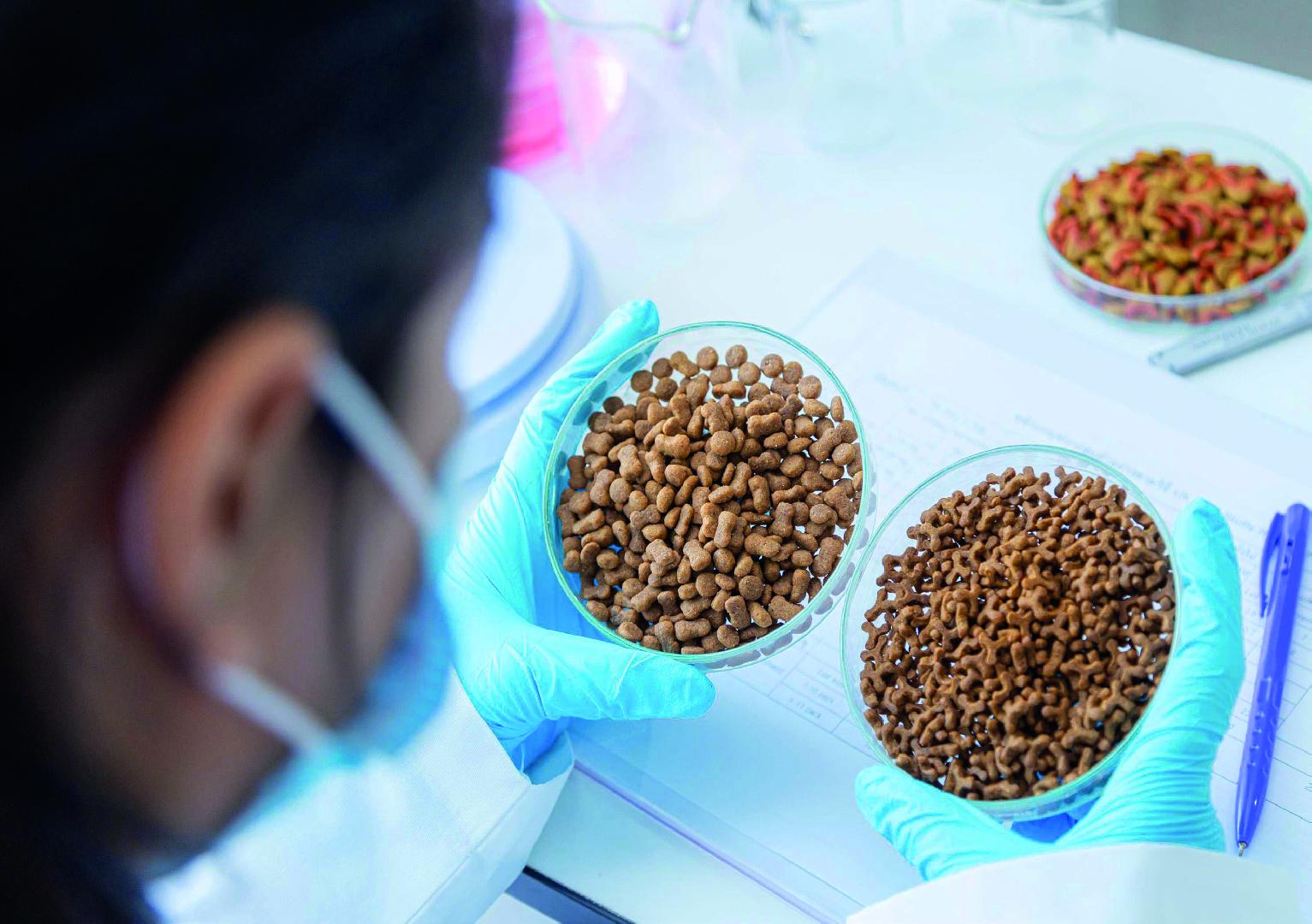 Micro Ingredients
Micro Ingredients
2+ MIN
27/12/2022
Hydrolyzed functional proteins - Improving health inside out
We take a holistic approach to pet health, developing functional ingredients that span all major health areas, intending to improve pets' overall well-being. We seek to inspire and unlock new opportunities for our customers through our high-quality, science-backed ingredients for pet food products. Hydrolyzed functional proteins to improve health Palbio® 62 SP is a raw material for animal feed based on highly digestible and palatable hydrolyzed porcine intestinal mucosal proteins that promote feed intake and contribute to intestinal health maintenance in pets and companion animals. Enzyneer® Enzymatic Hydrolysis Technology It is a safe source of high-quality proteins and functional peptides, obtained with a unique industrial process (EnzyneerB Enzymatic Hydrolysis Technology). This process gives rise to a product composed of L-a-amino acids and bioactive peptides, which positively impact animals' intestinal health. Palbio® 62 SP is a hypoallergenic ingredient, fully digestible, and highly palatable due to its composition of aromatic amino acids and peptides. It contributes to intestinal health maintenance and contains bioactive peptides with different biological functions that provide nutritional well-being to pets. A sustainable, natural origin product Palbio® 62 SP is a sustainable product of natural origin, as its entire production process, which focuses on creating a circular economy. The raw material is a co-product of the pharmaceutical industry, and in its value creation process, a great amount of water is recovered, recycled, and reused in energy and other auxiliary materials, avoiding waste generation, harmful to the environment. As shown in tables 1 and 2, Palbio® 62 SP is a high-quality protein that positively affects feed intake and intestinal health in monogastric animals. Table 1. Incidence of Palbio® 62 SP in dry food intake Table2. Incidence of Palbio® 62 SP in wet food intake In addition, other benefits have been shown in their general well-being and intestinal health: High palatability Compared to diets containing other animal and vegetable protein sources, feed intake improves. Improves feed intake compared to diets containing other sources of animal and vegetable protein. Hypoallergenic Thanks to its low molecular weight of 600 daltons, it is considered non-allergenic. Functional activity Palbio® 62 SP promotes intestinal cell selective proliferation, as well as the selective expression of genes in intestinal cells related to digestive health. Digestive health Genes related to barrier function, nutrient transport, digestive enzymes, digestive hormones, antioxidant enzymes, and immune response benefit from Palbio® 62 SP. Palbio® 62 SP is suitable for all species, improving intestinal health and animal welfare. Source: Iberian Feed
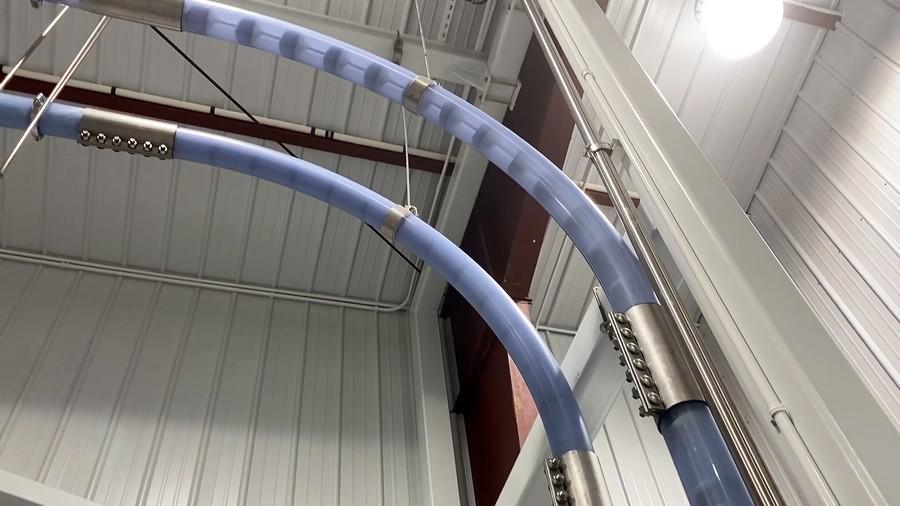 Conveying Systems
Conveying Systems
5+ MIN
26/12/2022
Protect Against Pet Food Recalls with the Right Conveyor System
With the threat of contamination from harmful pathogens such as salmonella, listeria, and E. coli a continual concern, pet food processors are seeking to protect not only the public but also their companies' bottom lines from the massive costs, reputational damage, and greater regulatory scrutiny associated with recalls. The goal is a safe, clean, sanitized working environment. According to the FDA's Food Safety Modernization Act (FSMA) Final Rule for Preventive Controls for Animal Food, 'Every facility that produces animal food with a hazard requiring a preventive control must have a recall plan.' (https://www.fda.gov/food/food-safety-modernization-act-fsma/fsma-final-rule-preventive-controls-animal-food). The FSMA Final Rule for Preventive Controls for Animal Food has various key requirements. Among these, covered facilities must establish and implement a food safety system that includes an analysis of hazards and, if necessary, risk-based preventive controls. The rule sets requirements for a written food safety plan that includes details about the facility's hazard analysis and resulting preventive controls. Given the increasing number of outbreaks and recalls traced to post-processing contamination of foods, it is no surprise that the Preventive Controls Rule requires manufacturers to implement a food safety plan with the goal of preventing sanitation deficiencies. The rule covers sanitation practices for food-contact surfaces, preventing microbial and chemical cross-contamination, and monitoring potential environmental pathogens for critical equipment like conveyors. As a result, quality assurance teams are paying more attention to the type and design of conveyance systems used to help meet pet food safety standards. This includes identifying potential harborage points where debris and pathogens can collect, as well as implementing best practices to save on costs to clean equipment, perform regular testing, and maintain the environment. 'Every day we are asked for recommendations about the sanitary design of equipment,' says Justin Kerr, founder of Factor IV Solutions, LLC, a food safety consulting firm that has worked with hundreds of food processors and harvesting operations throughout North America. 'With conveyors, ideally there should be minimal harborage points, they should protect products from the environment, and be easy to clean.' Kerr says Factor IV Solutions assists food processors to develop Sanitation SOPs (SSOP: Sanitation Standard Operating Procedures) related to conveyors that include regular verification testing of food contact and non-food contact surfaces. However, given the risks of contamination, the potential for recalls, and the additional costs associated with regular cleaning and testing, it's advisable to select a conveyor that eliminates many of the potential risk factors. Selecting a Conveyor System In the pet food processing industry, open conveyor systems like bucket elevators and belt conveyors can be more vulnerable to contamination. With open systems, products can be exposed to pathogens, contaminants, or moisture in the surrounding environment. Product can also spill onto the plant floor and make its way into drains. Consequently, processors that use such conveyors must maintain strict environmental controls including constant swabbing, testing, and quality assurance. Closed conveyor systems, on the other hand, effectively seal off products from the outside environment. Even then, it is still necessary to control the environment. Although there are several types of closed systems, one popular example when conveying high-value foods is tubular drag cable conveyors. These systems gently move products that are prone to breaking or crumbling through a sealed tube using a coated, flexible stainless-steel drag cable pulled through on a loop. Solid circular discs (flights) are attached to the cable, which push the product through the tube without using air. The coated cable ensures that no debris accumulates within the strands of the cable, as the cable is totally sealed. 'An enclosed conveyor like the Cablevey provides a controlled environment that reduces the risk of exposure to contaminants and pathogens from outside the system when properly maintained,' says Kerr. 'Because it is closed, it is less susceptible to aerosols and over spray from adjacent lines.' Oskaloosa, Iowa based-Cablevey Conveyors is a specialty conveyor company that has designed, engineered, and serviced enclosed cable and disc tube conveyors for over 50 years, with installations in over 65 countries. The company's product can be as small as powdered material or as large as whole potatoes, and is increasingly used to convey pet food, coffee, cereal, nuts, produce, and specialty foods. 'When we conducted trials and verification testing, we found that tubular cable conveyors maintain greater repeatability cleanliness over a longer period of time than open systems due to the controlled environment within the enclosure,' says Kerr. Additionally, Kerr notes that closed conveyors significantly reduce potential harborage points for contamination. 'Tubular drag cable conveyors are very simple in construction, without standard joints, threaded bolts, and plastic-to-metal connections,' says Kerr. Superior Cleaning Kerr points out another advantage: the enclosed conveyors also enable a 'wet cleaning' process without wetting the surrounding areas, in which the systems can be quickly and effectively flooded with water and sanitized without disassembly. While not all pet food processing materials are suited to wet cleaning, such as hygroscopic materials that readily absorb and retain moisture, the process minimizes potential contamination for other types of food. The wet cleaning procedure begins with a water rinse followed by foaming agent, a sanitizing rinse, and a final water rinse. Once the system is thoroughly flushed out, drying is achieved by attaching urethane wipers to the tubular conveyor's discs, which act like a 'squeegee' to remove any residual water. 'Within the tubular system, all wash factors can be repeatably controlled – water chemistry, temperature, physical action, and time – so every surface is equally cleaned,' says Kerr. He notes that clear tubes are available that offer the additional benefit of visual inspection or verification. Since a complete and thorough cleaning can be accomplished without disassembly of the system, the entire process only takes 20-90 minutes, depending upon the layout, product, and desired level of cleanliness. This can substantially reduce disruptions and downtime during production changeovers and eliminate the need for additional dedicated conveyor lines. Regular cleaning can be automated through the plant's distributed control system. 'A benefit of Cablevey is the repeatability and verification of surfaces cleaned and the ease of maintaining them,' says Kerr. 'You can do verifications against cleanliness and hold [the cleanliness] over a greater period of time.' When a pet food processor wants to ensure that a conveyor will meet its sanitation requirements, equipment suppliers like Cablevey often allow quality assurance teams to perform tests prior to purchase. 'Sometimes customers come to our test lab so they can run product and conduct swab tests before and after wet cleaning and review the results for themselves,' says Morgan Bailey, Communication Specialist at Cablevey Conveyors. In the pet food processing industry, the stakes are high when it comes to preventing safety issues. With the threat of contamination from harmful pathogens always a concern, processors are seeking to protect both the public and their companies' bottom lines from the massive costs associated with recalls. As a result, quality assurance teams are analyzing the type and design of conveyance systems more closely. Enclosed conveyors that are capable of automated wet cleaning can help mitigate risk and prevent many safety issues. These conveyors provide an extra level of protection by keeping debris and pathogens from collecting. They also save on costs by eliminating the need for manual cleaning. As processors continue to seek ways to improve safety, enclosed conveyors will become an increasingly popular choice. by: Del Williams, Cablevey Conveyors All Pet Food
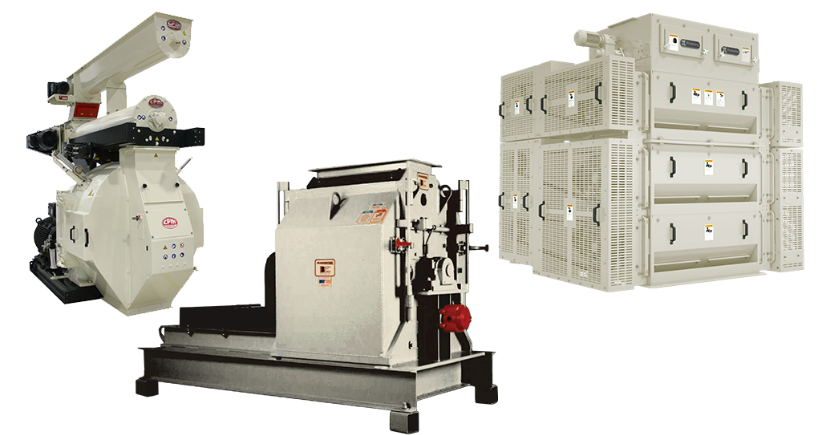 Grinding
Grinding
1+ MIN
23/12/2022
CPM Never Stops Evolving: New Colors Coming for CPM equipment
"The color change represents a step toward unifying our brand across the globe," said Maarten Visser, General Manager of CPM Americas/EMEA. "As CPM grows, our brand must evolve with it. We want our customers worldwide to associate the CPM name with the highest quality processing equipment available anywhere." "The new glossy white, accented with shiny black-gray, gives the equipment a sleek and modern new look. What's inside, Visser said, will not change at all". All types of CPM equipment are included in the upcoming color change, but existing orders will not be impacted. Equipment with the colors will be in the market later this year. About CPM - History The origin of CPM can be traced back to California's Napa Valley, where, in 1883, the Toulouse & Delorieux Co. manufactured presses, crushers and stemmers for winemakers. In 1931, the company created the first pellet mill, the 30 HP Flat Bed with stationary flat die, and we became California Pellet Mill (CPM). In the years that followed, we created more pellet mill models with additional features. In the 1980s, we greatly expanded our product offerings through the creation of Roskamp Champion with the acquisition of the Roskamp Roller Mill Company and Champion Hammermills. In 2002, Beta Raven, a leading supplier of feed mill automation and ingredient scaling systems, joined the team. To learn more about CPM products, click HERE. Source: CPM
 Micro Ingredients
Micro Ingredients
3+ MIN
22/12/2022
Application of Spirulina as an ingredient for dog and cat food
They are a source of amino acids (approximately 65% of crude protein), minerals, vitamins, gamma-linolenic (GLA), eicosapentaenoic (EPA), and docosahexaenoic (DHA) fatty acids. They also present approximately 15% of biliproteins (C-phycocyanin, allophycocyanin, and phycoerythrin) (TAKEUCHI et al., 2002), with a powerful antioxidant action demonstrated in in vitro studies and in some animal species. Due to its chemical composition, immunomodulatory effects have been attributed to this ingredient in humans and animals. Compared to other substances used as antioxidants in animal feed, the alcoholic extract of Spirulina inhibited lipid peroxidation more significantly (65% inhibition) than alpha-tocopherol (35%), BHA (45%), and β-carotene (48%). The antioxidant activity of Spirulina has been attributed to the synergism of the antioxidants present since extraction with hexane, petroleum ether, ethanol, and water show antioxidant activity, demonstrating the presence of compounds of a different chemical nature in Spirulina composition. An important aspect is the more powerful activity of the aqueous extract of this algae, even after polyphenol removal, which suggests the presence of water-soluble compounds with an important antioxidant action (CHOPRA & BISHNOI, 2008). Phycocyanin is extracted from Spirulina Platensis and can act in the retention of free radicals and iron chelator and protect the activity of antioxidant enzymes (MIRANDA et al., 1998). Oxidation and inflammation play a key role in many diseases, including degenerative diseases. The formation of free radicals is related to the immune system weakening and aging. In vivo, Spirulina can reduce markers of brain oxidative damage and reverse age-related increases in proinflammatory cytokines (GEMMA et al., 2002), substances necessary for the inflammatory response. Antioxidants consumed as part of the diet are essential to protect cells from damage caused by free radicals. Antioxidants have been investigated for their ability to influence the immune system, especially in the inhibition of tumor genesis in laboratory animals, in the modulation of the inflammatory response, in the regulation of the production of certain cytokines in vivo and in vitro, and in the phagocytic activity of macrophages (BORCHERS et al., 2009). Spirulina also has some glycolipids (O-β-D-galactosyl-(1-10)-20,30-di-O-acyl-D-glycerol), which have immunological characteristics similar to microorganisms' cell wall components of microorganisms, functioning as Toll Ligands, which, in turn, stimulate especially TLR-2 and TLR-4 receptors. Therefore, these foods are recognized as "foreign elements' to the body and stimulate the immune response. (HAYASH et al., 1994; BORCHERS et al., 2009). Small daily amounts of Spirulina may have various health benefits for dogs and cats. Several studies in the nutritional and immunological areas mentioned below have identified Spirulina inclusion in pet food offers many benefits in promoting animal health. One of the main Spirulina benefits is its role in immune reinforcement. It works by helping and improving the intestinal microflora and this, in turn, helps improve immune and intestinal health (REYNOLDS & SATYARAJ, 2014). LABRES (2012) demonstrated that Spirulina usage up to the 3% level in diets is safe in dog food formulas. In the inclusion of 1%, there was seen a reduction in the production of interleukin 10 (IL-10) by the mononuclear cells of dogs fed with Spirulina, which seems to be related to the better oxidative status of the animals, verified also by lower serum concentrations of thiobarbituric acid reactive substances (TBARS). A healthy digestible system allows a better nutrient usage, especially of Spirulina itself, stimulating the immune system and increasing the body's ability to generate new blood cells, as well as suppressing harmful bacteria from the gastrointestinal tract such as Escherichia coli (MANCHESTER et al., 2013). Studies show that Spirulina has an immunostimulatory effect by increasing resistance to infections through antibody stimulation. In cats, an increase in the macrophages' phagocytic activity was found in the presence of Spirulina, which means greater effectiveness in germ elimination (QURESHI & ALI, 1996). Dogs fed with Spirulina-supplemented diets had higher vaccine (rabies) responses and higher fecal IgA levels, compared to dogs that did not receive Spirulina in their diets (REYNOLDS & SATYARAJ, 2014). Therefore, animal immunity and resistance to diseases are increased, and Spirulina use can reduce the need for antibiotics and other drugs. Spirulina application is still timid in the pet food industry, yet we see some supplements and specific foods that contain this ingredient as a functional one. There is still little information on the application of this ingredient in the process of preparing extruded or cooked diets at high temperatures. Some experts suggest embedding it in an oil bath after the extrusion process. However, further studies are needed to assess the feasibility of using Spirulina in industrialized products for dogs and cats. By: Liliane Palhares, Ludmila Barbi and Erika Stasieniuk
 Interviews
Interviews
8+ MIN
21/12/2022
Interview with Francisco Ríos - Director of Corporate Affairs at Mars Pet Nutrition, México
Please, tell us a little about your professional career. For more than 15 years, I have been in the areas of Communication, Institutional Relations, and Public Policy and, since 2017, I have been part of Mars in the Mars Pet Nutrition Mexico division, as Director of Corporate Affairs. Before joining Mars, I was in charge of the Directorate of Government Relations and Public Policy for Latin America at Kellogg Company. I have been part of different councils, chambers, and associations, as well as foundations that support social causes related to child malnutrition and food banks, and now I work very closely with those that promote animal welfare. I like that, through my work, I promote the business leveraged by the purpose of MARS Petcare to make A Better World for Pets, as well as manage and influence allies in key spaces for it to continue operating successfully. Can you give us a small presentation of the company? What is its mission in the market? Mars Petcare is one division of the company, a family business with more than a century of history and a presence in 80 countries. We are world leaders in pets' health and nutritional needs. Through our brands: PEDIGREE®, WHISKAS®, CESAR®, CHAMP®, PAL®, and SHEBA®, and the expert care of BANFIELD® veterinary hospitals, we work to offer a whole portfolio of options, seeking to grow our brands through our inspiring purpose "A BETTER WORLD FOR PETS." For this reason, we make healthy, safe, and nutritious products, offering different options tailored to the characteristics and needs of dogs and cats, which are now present in 7 out of 10 homes. Today, Mars Petcare Mexico is the 4th market for the company globally. In our country, in the pet food division, we have 4 manufacturing plants located in Queretaro and Jalisco to satisfy local demand and those from other regions. What are the main challenges for the company to continue improving and growing? What is the growth focus for 2023? What do you think is essential to focus your efforts on? The first great opportunity is to take advantage of caloric conversion, which, in Mexico, being less than 50%, represents a great potential to keep growing. In other words, this means that our portfolio of complete and balanced foods is a great alternative for the adequate nutrition of dogs and cats (compared to those who give them homemade food) because today, relationships with pets have evolved, and they will continue that way. They occupy a closer place in our house and are part of our family. This closer relationship and genuine interest in improving their lives have led consumers to be more aware of the importance of balanced meals to take care of their health and, therefore, their diet. We see the pet food category continue with double-digit growth driven by the transformation of the role of dogs and cats within the family dynamic. One of our main focuses is also to keep promoting the wet food market for pets since it is growing faster than the category. We also have a great opportunity in two other sectors, one is everything related to cats since the dynamics of this pet in cities with smaller living spaces makes it a great companion that can stay alone at home. Another important trend is the search for more natural foods that provide nutritional balance and help pets lead healthier and happier lives. We will keep working to assist more pets worldwide, offering complete and balanced foods through our different brands and variety of products. Some of our most recent proposals are, for example, WHISKAS® Balance of Nature and CHAMP® in the dog food category, both products without dyes and with the essential nutrients they need, thus contributing to their quality of life and providing a healthy balance in your diet. As a company, our goal is that there are no more animals living on the streets. For 14 years, we have been working with strategic allies, such as shelters, associations, and even clients, to promote the adoption of pets and responsible ownership while promoting our purpose. Some of our initiatives are focused precisely on supporting, through the shelters of our PEDIGREE® Adopt Me program and other key allies, sterilization campaigns, and enabling more pet-friendly spaces that allow pets and their guardians to strengthen the bond. For example, we work with shopping centers to provide guidance on the right infrastructure and amenities to enable pet-friendly spaces, always prioritizing animal welfare. What innovative proposals are approaching the market? We, at Mars Petcare, as industry leaders, seek that the nutritional proposal of our brands has the scientific support of the Waltham Research Center, in addition to always prioritizing quality as one of our Five Principles. In particular, we were pioneers in the proposal of wet food for pets in different formats such as pâté and fillets, while in oral health, we also have a great product: PEDIGREE® Dentastix, which due to its exclusive shape and active ingredients help reduce plaque formation and dental tartar. As a business, a large part of our innovation proposals is anchored in the importance of linking our operation with our purpose. We have set ourselves the objective of promoting initiatives that ensure there are no more dogs on the streets, promote responsible adoption, and encourage pet-friendly culture to be part of our society. For example, our PEDIGREE® Adopt Me Web App seeks to take advantage of digital tools to bring those individuals or families interested in adopting a new member to their family closer together so that now they can do so more easily. In 2021 we inaugurated the first stadium with a 100% pet-friendly space in the world in Querétaro, just 2 hours from Mexico City, the Corregidora stadium. This pet-friendly space, like many others we support, arises to continue strengthening the bond between people and pets for all the benefits they bring to our lives. Finally, another example is the podcasts Ciudad para las mascotas, available on digital platforms, in which pet managers can learn more about how caring for their dogs and cats and welcoming them as part of the family helps us be more connected, healthy, and happy. What is the expansion projection for 2023? At the beginning of this year, we announced a total investment of 100 million dollars (2,100 million pesos) over the next three years, which will allow us to double the production capacity of our wet pet food plant located in Queretaro. This project is generating 600 temporary jobs and will welcome more than 100 new Associates. The expansion will be ready in the third quarter of 2023 (an 18-month project), and will allow us to double our production capacity by installing 12 production lines to manufacture an additional 40,000 tons per year, allowing 70,000 tons of product annually. This represents more than 55 million Envelopes® of wet food per month for the PEDIGREE®, WHISKAS®, CESAR®, AND SHEBA® brands. In relation to the trends in the industry, such as the high humanization of pets or changes in food, what changes have you made in your production process, technologies, or products? Our product's innovation and evolution is essential for us. That's why we are constantly strengthening our product portfolio to offer the best nutrition to dogs and cats, focusing on different types of food, textures, benefits, and experiences to satisfy the needs of those responsible for pets and also those of companion animals. We strive to have the correct presentation (size and price) in the different distribution points where our consumers want to find us. For example, we recently renewed the PEDIGREE® portfolio, including our Biscrock snacks, in addition to launching the PEDIGREE® High Protein variety in its dry and wet technology, the new Dentastix® Meat, we launched two new varieties of our cat food, with WHISKAS® sterilized cats and WHISKAS® protein mix, as well as our WHISKAS® Premium snacks, always under the scientific support of the WALTHAM® research center, the world authority in pet nutrition research that defines the nutritional, quality, and food safety standards for all MARS brands. What policies has the company adopted in terms of circular economy and sustainability? We believe that the world we want tomorrow begins with the way we do business today. That's why, at the heart of our strategy, is our "Sustainability in a Generation Plan," where the planet is healthy, people and pets thrive, and society is inclusive. Based on this plan, we managed to bring to life initiatives that address key areas of the United Nations Sustainable Development Goals and that include ambitious purposes based on scientific data. We have the goal of reducing our water use by 50% by 2025 to achieve a water balance in all our plants in Mexico. This commitment will allow us to contribute to the recovery of more than 42,000m3 of water in all our plants in the country. We are proud to join three projects hand in hand with strategic associations focused on water recovery to achieve a significant impact: Metropolitan Environmental Fund of Monterrey A.C., for the restoration of the Cumbres de Monterrey National Park, promoted by our two candy and confectionery plants located precisely in Nuevo León. Our pet food plants in Queretaro, Jalisco, and the chocolate plant in the State of Mexico join 'El Fondo de Agua Cauce Bajío' in collaboration with Nuup and the Secretary of Agri-food and Rural Development of Guanajuato. The Jalisco plant joined the Charco Bendito project in 2021 for comprehensive restoration of water care in a section of the Arroyo Grande micro-basin. What do you consider to be the main current challenges for the growth of the industry? In Mexico, the pet food market is the fourth most important market, for us at Mars, this continues to represent a scenario of great opportunities. In the coming years, the concept of "value for money" will continue to gain relevance, companies must maintain diversity in their product portfolio, covering the different needs of customers and their pets while adapting to new purchasing trends with innovative proposals. A clear example of the changes in the market for the coming years is the new generations who will continue to be relevant to the industry. In addition, according to our study "Homeless Pets Index (IMSH)", 62% of those surveyed expressed interest in adopting a cat and 77% a dog, so we need to be ready. We are positive about the category's performance, thanks to a mix of factors, including the market, business decisions, and doing the right thing for pets and their guardians, our customers, and our company. Any comment or information you want to add is more than welcome! At Mars, we are proud to be a family-owned business with the ability to invest long-term in the future of our business, our people, and the planet, all guided by our Five Principles. We believe that the world we want tomorrow begins with the way we do business today. We will continue to work to improve the well-being of families and their pets around the world, and we will continue to share our research and innovations to create a better world for pets, so every day we are a little closer to the world we want tomorrow. Source: Mars Pet Nutrition
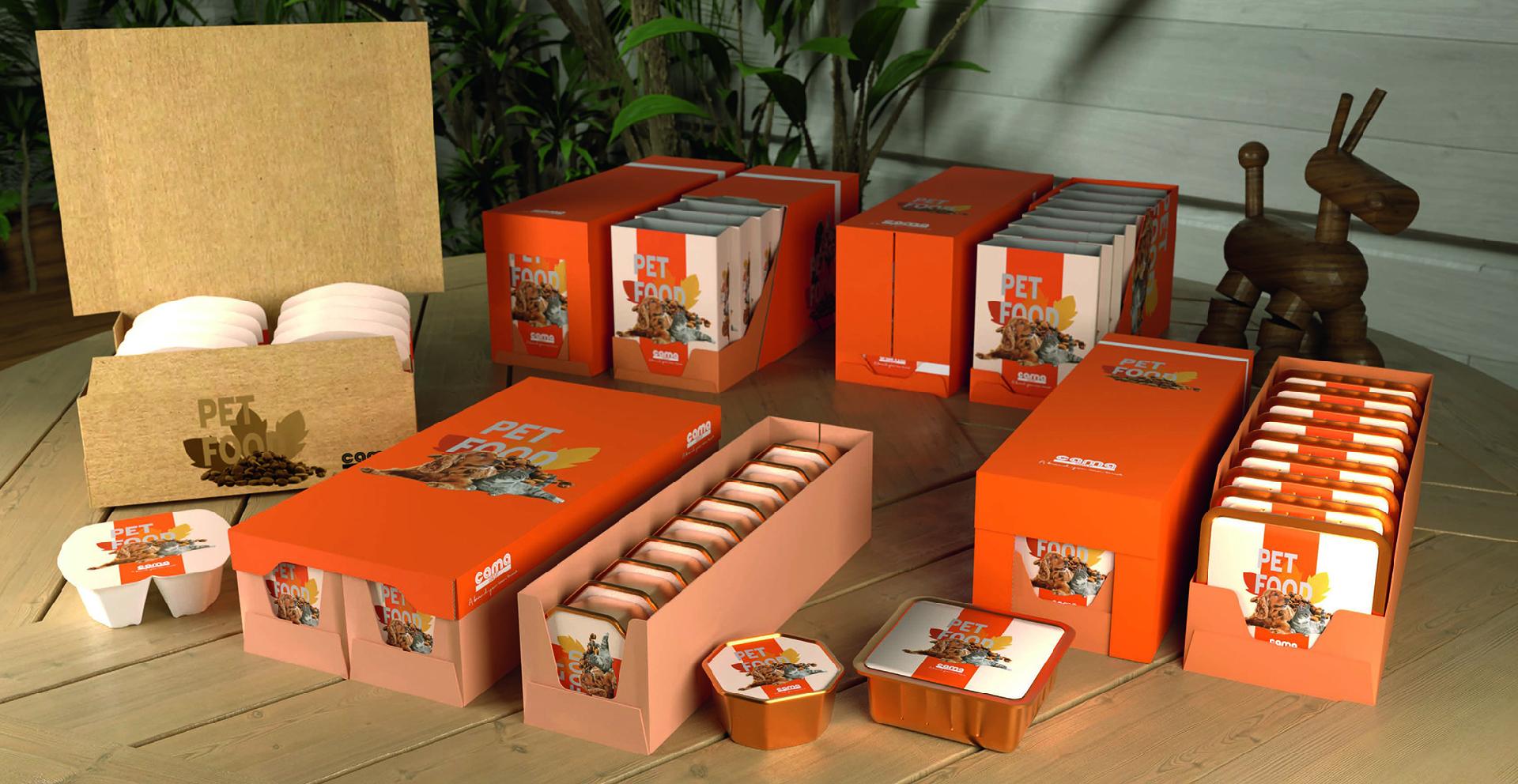 Packaging
Packaging
5+ MIN
20/12/2022
Packaging variety is not an issue… if you have the right solution
The majority of pet owners will tell you that their pet is considered a member of the family; but it is only relatively recently that this familial status has been reflected in the way we feed them. Go back 10-15 years and all you would find on supermarket shelves would be a limited number of food varieties in standard 400g tins, with multipacks all containing the same variety. Fast forward to the present day and it is fair to say that the pet food industry has undergone a renaissance. Owners are now spoiled for choice as they face walls of exotic flavours, made from premium healthy ingredients, prepared (it appears) by Michelin-starred chefs, packaged in innovative containers and backed by multi-million Euro advertising campaigns. This incredible level of variety and product differentiation maybe good for the owners (and of course their pets), but it creates a logistical nightmare for the producers' manufacturing and packaging operations. Not only do they have to cater for a wider choice of flavours and packaging formats, but they also have to create mixed packaging arrays that deliver the all-important dietary variety. 'It's a pain point,' explains Wim Kruikemeijer, Area Manager Northern Europe and Global Petfood Manager at Cama Group. 'Many people no longer want to feed their cats or dogs the same flavour every day, so there has been an incredible pull from the market for greater variation. This is good for the animals too, as it delivers greater dietary variety. As a result of this, many of the premium pet food suppliers are looking to mix flavours and then package them in shelf-ready cartons – with as many as six flavours in each carton. If this is undertaken manually, it is an incredibly labour-intensive task." 'There has also been a major shift away from the typical 400g tin,' he adds. 'The humanisation of pet food has resulted in more premium-look-and-feel packaging – on a par with human food packaging – with single-portion servings of fresher food gaining significant headway in this crowded market. Compounding these widely varying demands is a growing decline in plastic acceptance, which is seeing a move back to metal and recyclable packaging, albeit in varying sizes. Manufacturers have certainly got interesting times ahead and, as a result, so do the packaging technology companies.' In a typical wet pet food operation, the meat is prepared, sterilised and packaged before being quarantined for up to a week to catch any quality issues before going to market. After the quarantine period all the flavours are collected, mixed offline and then packed into secondary cartons and boxes. This secondary packaging is either fully automated, semi-automated or, in many cases, completely manual. 'For one plant we support, the first step towards their wider automation was a semi-manual process for creating and closing the cartons,' Kruikemeijer explains, 'but this is just one example of the way that companies can move towards automatic packaging processes. Our technology allows companies to match their aspirations and take gradual steps; it totally depends on the customer and how they want to achieve their automation levels.' Cama is in the perfect position to help pet food companies – both large and small – to realise greater efficiencies through the automation of packaging operations. 'We've been supporting this industry for over 15 year now,' Kruikemeijer elaborates. 'We have helped many companies across the globe absorb the impact of changing market dynamics. We've seen the natural progression of packaging, starting with cans, onto trays, into pouches and now back to cans again. We've also addressed the multi-flavour issue thanks to tightly integrated and highly flexible automation infrastructures and in-house-develop robotic pick-and-place systems. Indeed, this industry is not unlike the coffee industry, in which we are a market leader, with its huge variety of packaging concepts." 'The pet food industry – like the many other sectors we serve – is always laying down packaging challenges that centre around the need for flexibility coupled to efficiency,' he adds. 'We are in a fortunate (and deliberate) position in that we invest at least 5% of our turnover in research and development, and it is this investment that helps us help our customers. Cama also has a unique portfolio of technologies that covers the breadth of packaging concepts and packaging formats. Thanks to this spread, we can offer best-fit solutions, rather than a compromise based on a limited offering. In fact in many cases we suggest two or three packaging concepts and then work with the customer to define the strategy and technology that fits their needs precisely." From a technology perspective, Cama's Breakthrough Generation (BTG) solutions are setting the standard in secondary packaging. The BTG approach comprises modular, scalable frameworks that offer easy entry and access, coupled to a hygienic machine design. Within this framework, contemporary automation solutions, including advanced rotary and linear servo technology, can be tightly coupled to in-house-developed robotics, to deliver the all-important flexibility and adaptability required by modern packaging operations. 'Cama, as a company, is highly flexible and offers the capability and mindset to think outside the box, not just as a machine manufacturer,' Kruikemeijer explains. 'We're more and more thinking like a line-side operator or maintenance engineer, imagining how we can make our machines even easier to use and maintain. We are capable of listening very carefully to the customer and what keeps them awake. This is part of our uniqueness. Sometimes you need to learn from the customer and then think almost like a child. 'Is it too complicated?', 'Can we make it simpler?' and 'How do we keep it practical?' 'We have multiple successes under our belts, from some of the world's leading brands… and lots of small local ones too,' Kruikemeijer concludes. 'They all have the same challenges, just on a different scale. The future will centre around sustainability and this will be compounded by shorter product lifecycles, so flexibility is paramount if an end user is to get the best possible return from their automation investment. The whole of industry is undergoing the same type of paradigm shift, and we see it as a personal responsibility to make sure our customers can all stay ahead of the game.' By: Cama Group
 Cats
Cats
3+ MIN
19/12/2022
FDA Approves First Oral Treatment for Cats with Diabetes Mellitus
Bexacat (bexagliflozin tablets) is also the first sodium-glucose cotransporter 2 (SGLT2) inhibitor new animal drug approved by the FDA in any animal species. An SGLT2 inhibitor is not insulin and is not for use in cats with the type of diabetes mellitus that requires insulin treatment. The labeling for Bexacat includes a boxed warning regarding the critical need for appropriate patient selection and the potential for certain severe adverse reactions. As with people, the cells of a cat's body need sugar in the form of glucose for energy. Cats with diabetes mellitus cannot properly produce or respond to the hormone insulin, which helps cells use glucose as a source of energy for normal function. Without treatment, cats with diabetes mellitus will have high levels of glucose in their blood and urine. The first symptoms of diabetes mellitus are usually increased thirst and urine output, weight loss, and increased appetite. Diabetes mellitus in cats often requires lifelong therapy. Cats with diabetes mellitus have been traditionally treated with a combination of insulin therapy and diet. Insulin therapy requires owners to administer insulin injections, usually twice a day, roughly 12 hours apart at the same time each day. Bexagliflozin, the active ingredient in Bexacat, prevents the cat's kidneys from reabsorbing glucose into the blood, causing excess glucose to be passed out in the urine and resulting in lowered blood glucose. Bexacat is given to cats orally once daily via a flavored tablet. Although there are notable safety concerns with the use of Bexacat, they can be mitigated by carefully screening cats before starting the drug, continued diligent monitoring regardless of the duration of or response to treatment, and knowing how to promptly recognize and appropriately treat serious and life-threatening adverse reactions. The data from two 6-month field studies and an extended use field study demonstrated that Bexacat was over 80 percent effective in improving glycemic control in cats with diabetes mellitus. However, potential patients must be selected carefully and screened to evaluate for kidney, liver and pancreatic disease, as well as ketoacidosis (a high level of a type of acids, known as ketones, in the blood). Bexacat should not be used in cats who have previously been treated with insulin, are receiving insulin treatment, or who have insulin-dependent diabetes mellitus, as serious adverse reactions can occur. Bexacat should not be initiated in cats who are not eating well, dehydrated, or lethargic when diagnosed with diabetes mellitus. Cats treated with Bexacat may be at an increased risk of serious adverse reactions, including diabetic ketoacidosis or euglycemic diabetic ketoacidosis, which can be fatal. Cats with diabetic ketoacidosis or euglycemic ketoacidosis should be treated as emergencies, including discontinuation of Bexacat and initiation of insulin therapy. All cats who receive Bexacat should be examined and have blood tests at regular intervals following initiation of treatment. Cats should be carefully monitored for lack of appetite, lethargy, dehydration, and weight loss. Cat owners who note any of these signs should stop Bexacat treatment and immediately take the cat to a veterinarian, who should assess the cat for diabetic ketoacidosis or euglycemic diabetic ketoacidosis. Clients whose cats receive Bexacat should receive a Client Information Sheet informing them of the potential risks associated with Bexacat treatment, signs to watch for, and what to do if their cat becomes symptomatic. There will also be educational outreach to veterinarians to familiarize them with the appropriate use of the product. The outreach and materials will be available so veterinarians can learn about the product before prescribing its use. As with all new animal drugs, veterinarians and clients should report any adverse events to the sponsor, which is required to provide those reports to the FDA. Veterinarians and clients may also report directly to the FDA. Bexacat oral tablets are administered to cats weighing 6.6 pounds (3.0 kg) or greater once daily, at approximately the same time each day, with or without food and regardless of blood glucose level. Bexacat is supplied in 15mg flavored tablets in 30 and 90-count bottles.Bexacat is sponsored by Increvet Inc., based in Boston, Massachusetts. By FDA - USD Food & Dugs Administration
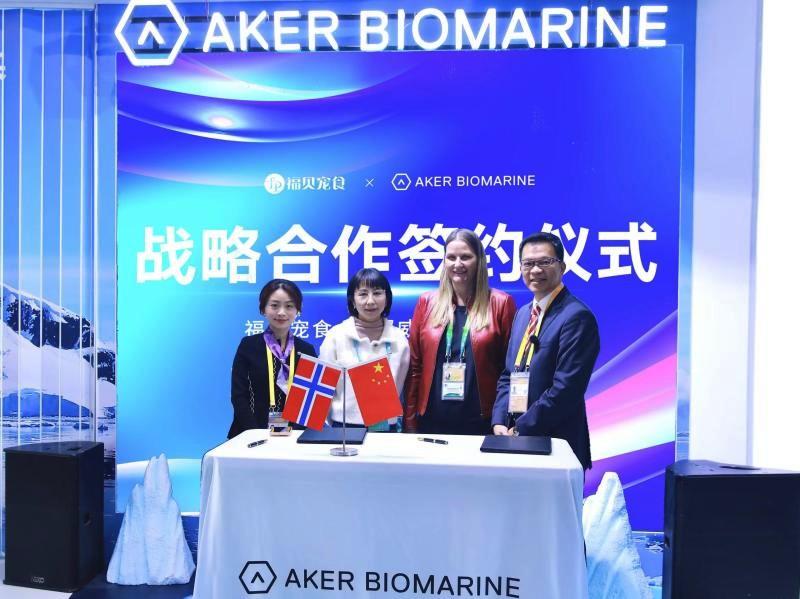 Animal Origin
Animal Origin
3+ MIN
16/12/2022
Aker BioMarine enters into partnership with leading Chinese pet food brand
As one of the largest pet food manufacturers in China, Fullpet is poised for market success and together with QRILL Pet, will continue to explore areas of science research, technology and consumer insight. The partnership will heavily focus on the customization of raw materials, sharing best in class practices from both parties to jointly promote the development of pet health food.
The agreement signing took place during the 5th annual China International Import Expo (CIIE) in Shanghai earlier this month. This is the second signing since the 4th CIIE event in which Aker BioMarine and Fullpet Co. first entered into a partnership. Currently, Fullpet utilizes QRILL Pet to produce tailor made pet staple foods, which not only effectively improves the nutritional value and functional performance of pet food, but also wins the recognition and support of consumers in China.
QRILL Pet, Positioned for Growth in China
China is the world's largest market for marine ingredients and it is an important strategic growth area for Aker BioMarine. One of the key factors for Aker BioMarine's development of the Chinese market is having a local team that consists of well-experienced professionals within the pet food industry present in the region.
'China is an extremely fast developing pet food market and we are already making strides with Fullpet Co.,' says Matts Johansen, CEO, Aker BioMarine. 'At Aker BioMarine, we are much more than an ingredient supplier. We are a collaborative partner who brings valuable insights, introduces new market opportunities, and guides our customers for growth and product expansion across all aspects of the supply chain, even down to marketing. By strengthening this strategic partnership and heavily focusing on research, sustainability, technology and consumer insights, we can ensure success in the Chinese market and together we will continue to upgrade pet health food in China.'
"In the past year, we formed an incredible partnership with Aker BioMarine, recognizing not only the quality of their ingredients, but the quality attitude of their team members,' says Ms. Zheng Zhen, the deputy general manager of Fullpet Co. 'This level of excellence coincides with the outlook and expectations of Fullpet. Aker BioMarine has complete control of their supply chain and full competency when it comes to product development and promotion. We look forward to continuing our work with Aker BioMarine to improve the health of pets in the field of exploration.'
About Fullpet Co.
Fullpet Co. was founded in 2005, the main business is the research and development, production and sales of pet food. Known as "Foxconn of pet food industry", Fullpet Co. is one of the largest pet food manufacturers in China. Fullpet Co. is a national high-tech enterprise in Shanghai. At the same time, Fullpet Co. was recognized as the Enterprise Technology Center of Songjiang District in Shanghai and the pilot enterprise of patent work in Songjiang District, and was approved by the Shanghai Academician Expert Workstation Guidance Office to establish the first expert workstation in the field of pet food research in Shanghai.
By Aker Biomarine
Source: All Pet Food
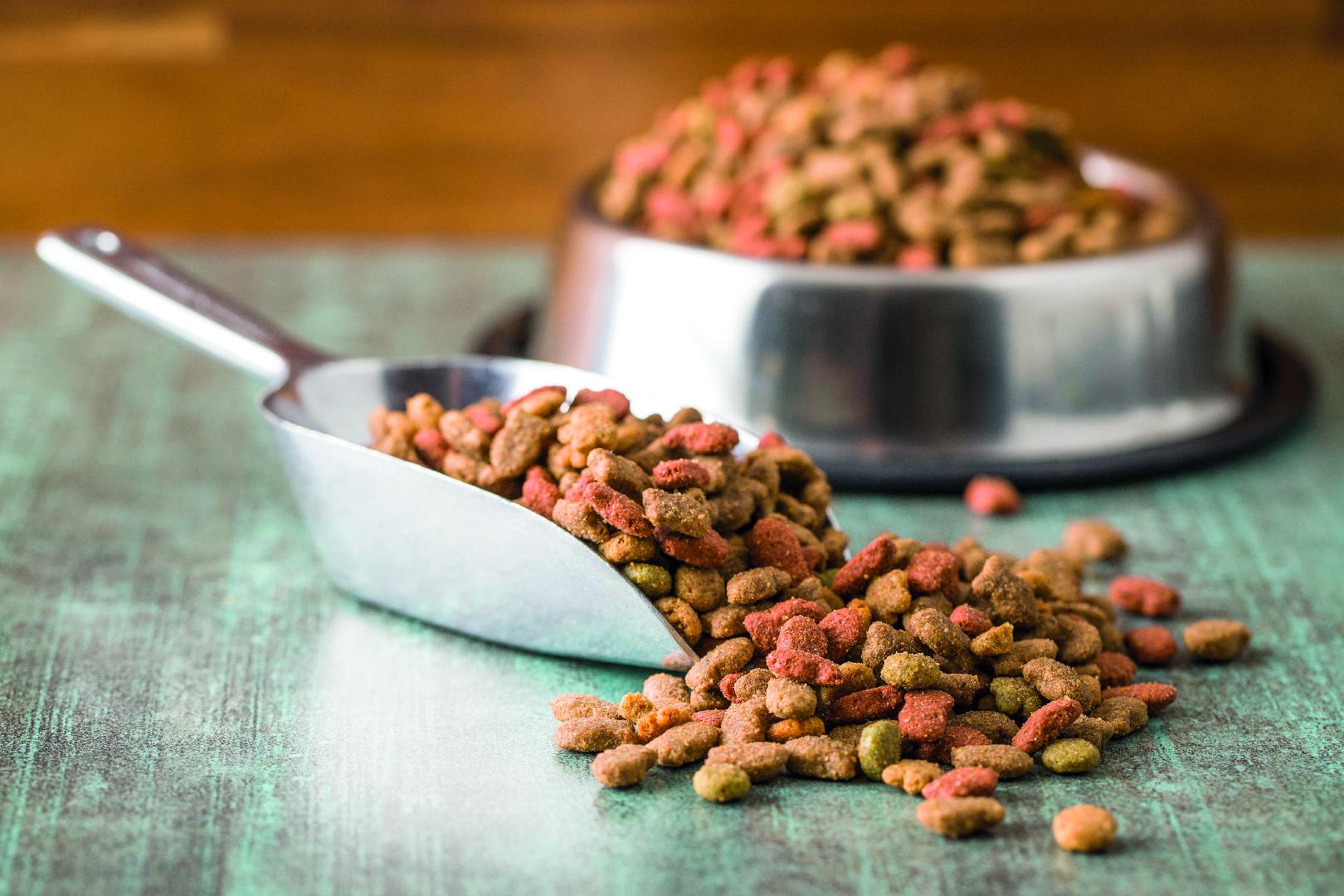 Trends
Trends
3+ MIN
15/12/2022
Por María Candelaria Carbajo
Ways to boost innovation in the pet food industry
With premium-type food products playing a leading role in the industry due to the trend of transferring people's consumption habits to pets, the only thing to do is to look for ways to improve the production chain. This way, we can reduce costs, be more efficient and offer better quality products. All this, hand in hand with innovation and technology. We have selected 4 aspects in which to work to promote innovation: 2 areas of the production process and 2 ways of working within companies. 2 areas of innovation in the pet food industry Selective extrusion We can work on specifically innovating the extrusion process using, of course, innovative technologies. How? Looking for selective extrusion. That means looking for only food starches to undergo the extrusion process. In this way, all the other ingredients are added in later stages through cold processes. With this elaboration process, food quality can be guaranteed, as ingredient transformation is carried out without altering their nutritional characteristics, preserving all the organoleptic and nutritional properties. Sustainability is the only way to create a future Consumer demand, hand in hand with human trends, drives innovation towards the search for more comfortable but above all, sustainable packaging. When we talk about product packaging of premium pet food, the one booming in the industry, we must say that its consumers are increasingly taking into account how environmentally responsible the packaging and information it provides is. One of the essential areas of innovation in this direction is to seek improvements in printing, both in quality and in costs and production process (with a sustainable approach, of course). The truth is that packaging is the first impression when selling a product. Years ago, it was a 100% physical experience, but now the online world has also been added. And either in one of the two formats, we must seek to offer what is expected of these products: convenient packaging with high-definition printing, such as a resealable opening, or materials that prolong food conservation. Today, sustainability innovation grows around packaging trends on recyclability and renewable resins. And as better technologies become available, we can improve recycling streams and costs. Many companies are considering post-consumer resin to build new packaging types or launching proposals to encourage consumption with the least possible impact, such as, for example, product pickup in stores. Two approaches to foster innovation Innovation can come from anyone, anywhere When we talk about promoting innovation in a company, we are not only talking about leaders looking for great ideas but about implementing an innovation culture that penetrates all areas and hierarchies. Innovation can happen and come from any level. We will never know how talented our employees are if we don't give them a chance to prove it! Innovation can come from anywhere if, as company owners or leaders, we are willing to consider someone else's ideas and learn from what they tell us and then... get ready to take action! Launch, learn, and improve This is how start-ups work: launching fast and then seeking constant improvement is their philosophy. But we do not need to be a technology start-up to implement this methodology. If we see the first result of an innovative idea as a sample from which to collect market information and improve it later, we are already doing it. It is there, in the feedback, where you get products that stand out in a market! It doesn't matter what we're working on. If we assume that the first version will never be good enough, we open the door to keep on working on new versions: more efficient, more precise, and more suitable for its possible consumers. Conclusion If there is something we must be clear about it in order to improve with innovation is that all company areas must participate to achieve success. Working with a focus on putting innovation at the service of the industry, we will obtain truly healthy food, tailored to the different pet needs without putting the planet we live on at risk. We remember, finally, that innovation does not have to be monumental; even the smallest things you seek to innovate on can have an incredibly significant impact down the road! Source: All Pet Food
 Trends
Trends
4+ MIN
13/12/2022
Por María Candelaria Carbajo
New demands for the pet food market: what alternatives do we have?
The industry is analyzing alternatives, which include that some existing ingredients, which have been used in a particular way until now, can play new roles in pet food recipes. Let's understand the context Supported by the human trends of consuming organic food, reducing meat consumption, and reviewing the production chain and the environmental impact of each food people consume, the pet food industry is suffering changes. Driven by those consumers increasingly aware of health and its impact on the ecosystem, the industry is motivated to seek new alternatives to meet the changing demands. Regarding sustainability, a survey carried out by Euromonitor International Global Lifestyle shows that the importance and concern about the environmental impact and the climate crisis are significantly greater among people who have pets than those who do not. In fact, almost 70% of pet owners are concerned about climate change and seeking to reduce their negative impact on the environment. These numbers do not drive but compel our industry to take action and listen to what pet owners are looking for when it comes to buying food, snacks, and accessories for their four-leg loved ones. Small change, great results Changing food formulation is not an easy task. Although within the industry it is believed that it can grow with what already exists, that is, without having to look for new ingredients, the complexity is not less. Making a small change to a pet food formula can have a great impact on the final product, from palatability to processing and packaging. And the truth is that some of these changes may be completely unexpected and discovered by trial and error and, in many cases, may not even be detected until a consumer puts it into words. That is why, if we work with raw materials that we already know, the impact of changing their function within a formula may be less or, at least, more controlled. In this sense, when applying changes in formulations, we can say that success, beyond the result, is anticipating and managing the 'cascade effect' changes. Challenges and opportunities in search of greater sustainability In recent years, as trends are already telling us, pet food ingredients have been in direct tension with sustainability. And while there is a large part of millennials who want their pets to be vegetarian or vegan (if possible), there are other trends, such as the ancestral diet, which encourages animals to eat as similar as if they were in their natural habitat. That ingredient, in most cases, would be meat. And for that, we have to consider that meat production significantly increases the industry's carbon footprint, as it is one of the most polluting food processes. Challenges seem not to stop, and we have to face that with consumers who negotiate less and demand more: mostly, they no longer want their pets to feed on meat by-products. This is due, in large part, to misinformation. However, until we can educate the audience, they will continue demanding and preferring foods with human-grade meat (that is, suitable for consumption by people) as the formula's main ingredient. Thus, it is clear how opportunities often meet new challenges aroused by a constantly changing industry. As we move towards new usage alternatives for the ingredients we already have, we must face various demands and obstacles that will suddenly emerge. The challenge is also indoors Similarly, applying changes to the functionalities or roles of ingredients not only has external challenges but also, and to which we must give the most importance, internal ones, which arise from food production and the complexity it entails. To change ingredient role, the most important details to keep in mind and review the cascade effects are: Functionality The ingredients that we use and have in stock, and on which we apply changes, must provide the functionality needed from a nutritional perspective as well as from the very practicality of the product. When applying changes to formulations, chemical reactions between ingredients must be considered, because they can modify proteins, amino acids, fatty acids, fibers, vitamins, and minerals availability, among others. Packing Since each ingredient has its own benefits, as some are very good at retaining water and others are good at providing a matrix of structure, there is a need to consider how best to package the final product (thinking about the new formulation). Should it be all the same? Is packaging with other characteristics needed? What product changes affect its conservation? Supply chain A factor that exceeds us as manufacturers of pet food is raw materials availability. If we make a formula change that impacts the amount we need of one of the ingredients, we must, before moving forward with the process, ensure that our current suppliers can provide the necessary amounts. If they don't, we will have to look for alternatives, either from suppliers or go back to step 1: the ingredient! It may not be a question of inventing anything new but rather of getting creative and, based on science and information, finding new ways to combine ingredients to improve the results and reduce the environmental impact. Of course, we must not forget to take into account the focuses of today's industry: quality, sustainability, and well-being. Source: All Pet Food
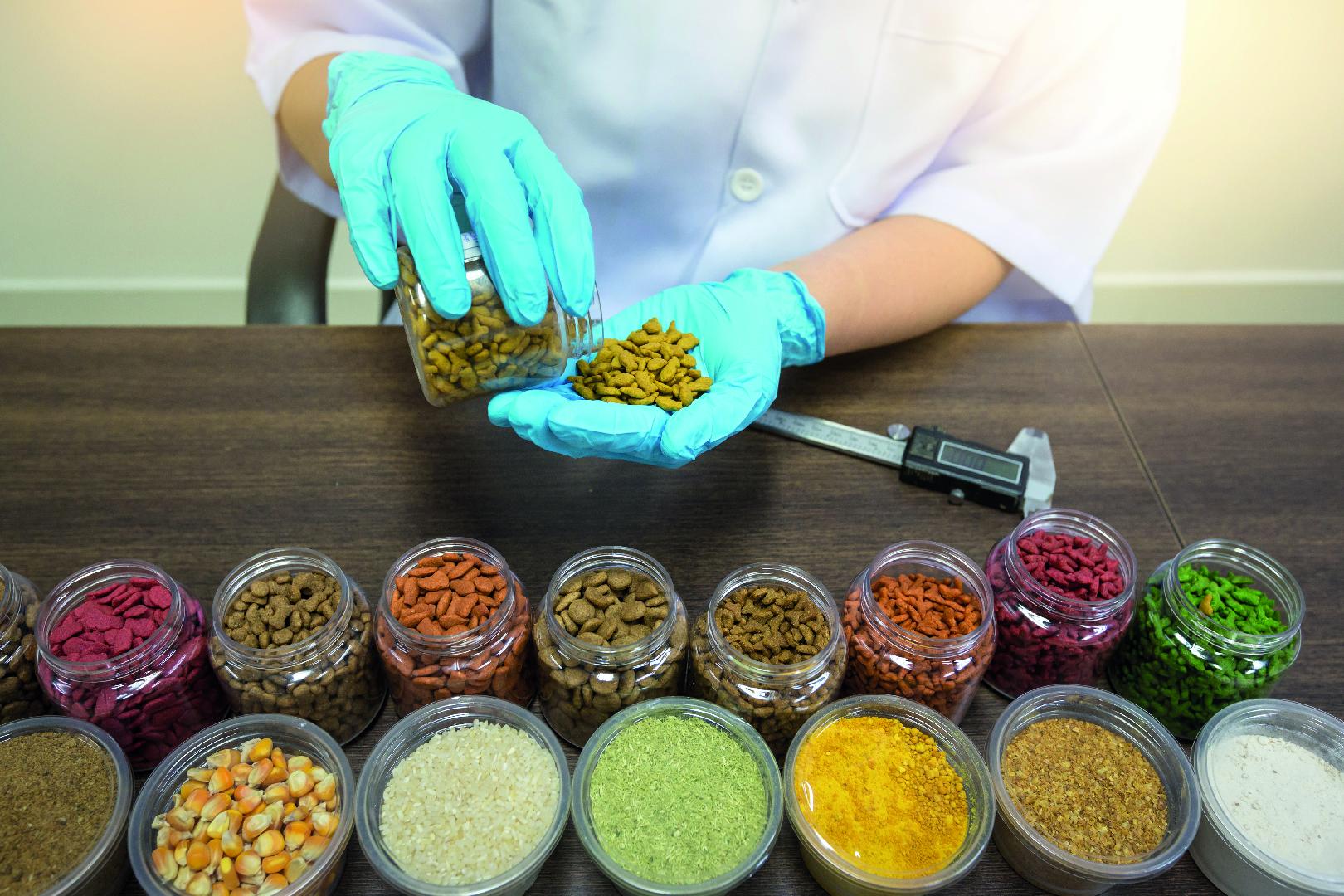 Trends
Trends
3+ MIN
06/12/2022
Por María Candelaria Carbajo
Research, gaps, and demands in the pet food industry
Research support If we talk about research, we must mention Champion Petfoods, a Canadian company that has shouldered the commitment to research to grow as an industry. This company has awarded a 5-year grant to Guelph University, a leading institution in veterinary medicine and animal science, intending to advance quickly and continuously in various pet food research. Together with other international research experts, the University, thanks to this grant, will be able to expand the fundamental knowledge of pet nutrition to different companies and organizations. The faculty conducts research in nutrition, physiology, molecular biology, behavior, reproduction, genetics, and more. Combining industry experience and scientific knowledge guarantees high-quality studies and research with the correct orientation to offer the most appropriate solutions to the market. Finally, what is remarkable about this event is not only the fact of advancing research that leads us towards a better industry but also the opportunity to train new students and leaders in the sector. Lack of research means bigger gaps The global pet food industry benefits from all market and academic research because shared knowledge creates expansion. Topics from veterinary medicine and animal nutrition to advertising and economics are essential when it comes to growing and improving the industry. However, lately, we have found that few researchers stop to assess whether the information flow they seek to provide will supply the knowledge that the industry needs to keep on evolving. Lonnie Hobbs, a scientist who specialized in agricultural economics at Kansas State University, questioned this: Do academic studies and industry reports provide the insights leaders need to grow? To answer the question, he designed a questionnaire to assess what industry leaders expect from scientific research among several companies of different sizes, a characteristic by which the companies were divided to identify the specific needs of small, medium, and large ones. Conclusions Some of the conclusions obtained based on the answers to the questionnaire are: Large companies as well as small ones with less than 100 employees prefer to research in the production area. However, the leaders of medium-sized companies consider research in raw materials as the most important research topic. Thus, some criteria interest all brands, regardless of their size. The ongoing conflicts and entanglements in supply chains are one of those: all companies would like to receive advances regarding raw materials and their sourcing to improve their operations. Many leaders consider there is a significant knowledge and research gap on this topic. Processing methods and technologies are other topics that companies of all sizes consider a priority in industry research. Another aspect they all demand of great importance when it comes to research for the sector is predicting consumers' tastes and preferences. The leaders also pointed to the search for new sustainable proteins as the challenge they consider the most complex to overcome throughout the next decade. Finally, we can highlight that all the leaders, regardless of what their company dedicates to or the current size, have highlighted the need to carry out research that obtains answers from real market consumers. That way it is possible to know more about the current client of the pet food industry. The differences in perspective arise in the how: while small-scale companies consider consumer surveys and trend summaries a great option, medium-sized companies prefer to focus on customer complaints. For their part, large-scale companies highlight the use of external resources and internal customer feedback as the most significant information gaps. A key factor: humanization The participants overwhelmingly identified the humanization of pet food as one of the top trends driving the industry, suggesting that more research on the various ramifications of this trend is needed to guide market decisions. It seems like a paradox but effectively, defining how and what to investigate results in great exploitation of time and money investments to find advances or points of improvement and innovation in the industry. Conversations with sector leaders result in identifying not only its importance to find funding and research spaces but also to identify the specific topics that pet food leaders need to know more about. The reason is quite simple: they are the ones who can best guide researchers on where to place their efforts, produce the most relevant results for the industry, and, at the same time, attract more funds for future research. Undoubtedly, the collaboration between parties guarantees us all to provide the necessary resources for quality research for the benefit of the industry and, above all, of pets.
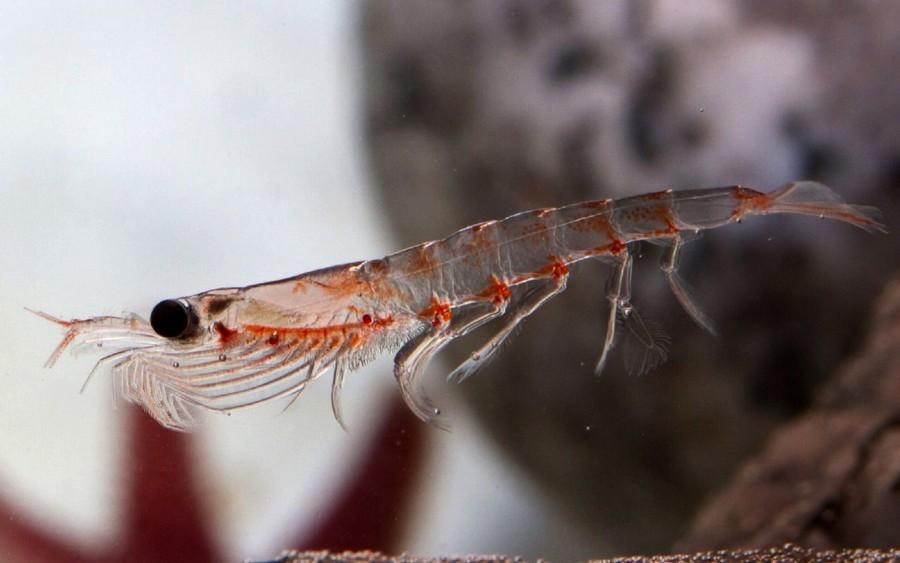 Animal Origin
Animal Origin
5+ MIN
02/12/2022
The Power of Krill for Dogs & Cats
Though they are teensy ocean creatures, krill are packed with vital nutrition that can help our land-dwelling cats and dogs live a long, vibrant life. No matter the age, size, or breed of your pet, krill can provide them with crucial nutrients that nourish and fuel the entire body. And that means more time and energy for all their favorite things — from curtain-climbing to frisbee fetch.
There's a reason krill should be on your radar — and in your pet's bowl. Actually, a LOT of reasons. So let's dive in…
The Power of A Single Ingredient
Krill is packed to the brim with nutrition — and yet, it's just one ingredient. One ingredient means no preservatives, no artificial additives, and no fortifying. It's just plain krill — high-quality nutrition straight from the ocean. All the good stuff and none of the bad.
So what exactly is all that good stuff? What makes krill so vital for our cats and dogs?
1. Omega 3
Krill is full of omega-3 fatty acids. We're talking good fat. Omega 3s promote a healthy inflammatory response throughout your pet's entire body and benefit everything from the heart to the immune system.
Cats and dogs can't produce omega 3 on their own, so they absolutely need to be eating omega-rich foods. Not only that, but it has to be the right kind of omega 3s — with DHA and EPA fatty acids. This form is readily available for the carnivore's body to use — a.k.a. exactly what ferocious Mr. Fluffums needs. And that's exactly the kind you will find in krill.
Plant-based sources of omega 3, on the other hand, contain ALA, which isn't as bioavailable to your pet — and therefore not as beneficial. So be on the lookout for meat based sources of omega 3, which contain that vital DHA and EPA.
Omega 3 with EPA and DHA
Krill (of course)
Grass-fed beef
Trout
Salmon
Anchovies
Mackerel
Sardines
Omega 3 with ALA
Flaxseeds
Hemp
Chia seeds
Walnuts
Soy
One last thing: adding omega 3 to the bowl is especially vital for kibble-fed pets. Kibble usually provides a lot of omega 6 and hardly any omega 3 — and it's all about a balanced ratio with these two omegas. Too much omega 6 and not enough omega 3 can lead to inflammation and health problems. So don't hold back when you add omega 3 to the bowl!
2. Phospholipids
Phospholipids deliver the omega 3 right to where your pet's body needs it most and help the body absorb a greater amount. This makes krill a super efficient and high-quality source of omega 3s. Nutrients aren't useful unless the body can actually use them, and phospholipids make it possible for the body to maximize the omega 3s and really reap the benefits.
3. Choline
Krill also contains choline, an essential nutrient shown to promote brain, heart, and liver health. Not bad. Not bad at all
4. Astaxanthin
Astaxanthin is known as 'nature's most powerful antioxidant.' It's hundreds of times more powerful than other antioxidants, which means its free-radical scavenging ability is unparalleled.
Antioxidants neutralize free-radicals in the body, which prevents oxidative stress (cell damage) and premature aging. Filling the bowl with antioxidant-rich foods gives your pet the tools their body needs to stay healthy and strong — especially as they age.
And here's a hot tip for kitty parents — cats especially need meat sources of antioxidants (like astaxanthin!) because cats aren't meant to have loads of leafy greens. Dogs can thrive with a combination of plant-based and meat-based antioxidants (yes, you should give your dog spinach!), but cats are obligate carnivores, which means meat is the name of the game pretty much 24/7. This makes krill absolutely crucial to a kitty's diet — it's a meat protein and nature's most potent antioxidant all in one. And that's win/win.
The Power of Sustainable Choices
There's another piece to consider when you decide to fill your pet's bowl with krill: we want healthy pets, but we also want a healthy planet — which means paying attention to our marine ecosystems and making sustainable choices.
Always look for manufacturers that source from fisheries that are committed to sustainability and minimizing our environmental impact (look for the Marine Stewardship Council label).
In our Simple Food Project recipes, we only use wild-caught krill. Our MSC-certified supplier is one of the most sustainable fisheries worldwide, with a deep commitment to conservation. They created a revolutionary technology called Eco-harvesting, which utilizes a hose to collect krill and bring it on board. This ensures that no other marine wildlife is harmed in the process. This kind of technology and conscientiousness allows us to care for our pets and our planet simultaneously.
As you peruse your krill options, you may come across chews and oils, but our recommendation is ground krill — which is the entire krill.
Ground krill is by far the most sustainable option. In order to produce oils and chews, manufacturers extract oil from the krill — and then throw away what remains. This is especially true for how humans use krill (since humans typically don't want to eat a whole krill). If the rest of the krill isn't used for anything, this practice is wasteful.
That's where ground krill comes in. Ground krill uses the entire krill — including the parts that would otherwise be discarded after oil extraction. So when you choose ground krill, you're also choosing an option that complements the human industry, provides your pet with maximum nutrition and honors the krill and marine ecosystem.
The Power of Krill
Preventive care is incredibly powerful, and adding krill to the bowl is one of the best things you can do for your pet's long-term health. Krill provides the body with vital nutrition during every phase of life — from developing puppy brains to aging seniors.
Krill can:
Boost the immune system
Encourage a healthy inflammatory response
Defend against free radical cell damage
Promote healthy aging
Support growth and development
Foster heart health
Balance the Omega 6 : Omega 3 ratio
Elevate a kibble diet
Support overall health and wellbeing
That's why Dr. Bessent added ground krill into every one of our Simple Food Project Recipes. And if your pet needs a little extra, it's as easy as adding ground krill like Pure Krill to the bowl. Just be ready for your pet to go crazy for that fishy flavor.
Regardless of how you feed krill, you'll be taking a concrete step toward a healthier pet. The krill will nourish the entire body, allowing your favorite four-legger to start reaping the health benefits.
by Krill Pet
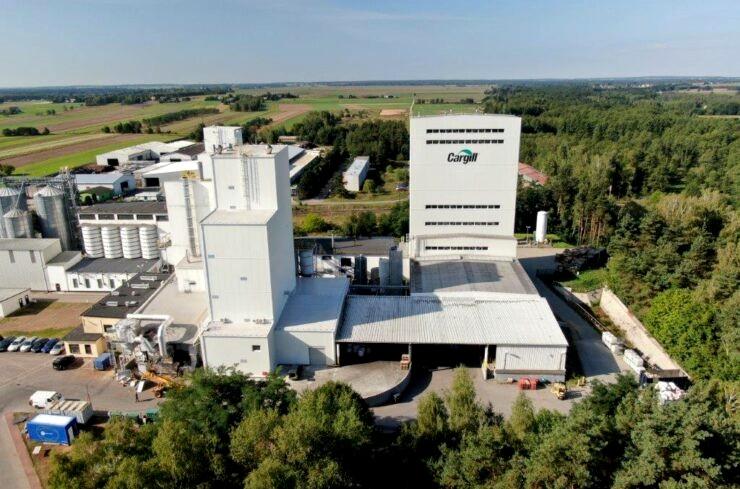 Market Information
Market Information
1+ MIN
01/12/2022
United Pet Food Group takes Over two Pet Food facilities of Cargill
Cargill provides food, agriculture, financial and industrial products and services to the world. They are active in 70 countries worldwide. United Petfood will take over two plants involved in the production of pet food. The two sites are specialised in the production of dry pet food for cats and dogs. Cargill retains ownership of its pet food brands and will continue to provide a portfolio of its branded products. According to Cargill, 'United Petfood, which has extensive operational experience in the production of pet food, combined with its commitment and investment in people, is well suited to the future that this business requires'. With the additional production plants in Poland and Hungary, United Petfood Group operates now out of 21 pet food facilities situated in 9 different European countries. The takeover is in line with the strategy of United Petfood to reinforce and grow the business. Source: United Pet Food by All Pet Food
 Market Information
Market Information
1+ MIN
30/11/2022
Buyer Registration Opens for Global Pet Expo 2023
The trade show features thousands of new product launches and a New Products Showcase area. Exhibitors showcase their newest products for attendees to get an insider look at the latest, cutting-edge products hitting the industry in one location, according to show organizers. In addition, Global Pet Expo offers a three-day Global Learning Series program, free and open to all attendees, focused on specific knowledge areas ranging from customer experience to market data and insights. Global Pet Expo 2022 was a resounding success, featuring a show floor spanning 269,500 net square feet of exhibit space, organizers said. The show was recently named the 'Best Use of Data' award winner at the 12th annual Trade Show News Network (TSNN) Awards. As of mid-November, Global Pet Expo 2023 has filled 80 percent of the show floor, with more than 575 exhibiting companies committed, organizers said. The floor plan, hotel reservations and booth applications for Global Pet Expo 2023 are live. Media registration is also live. by All Pet food
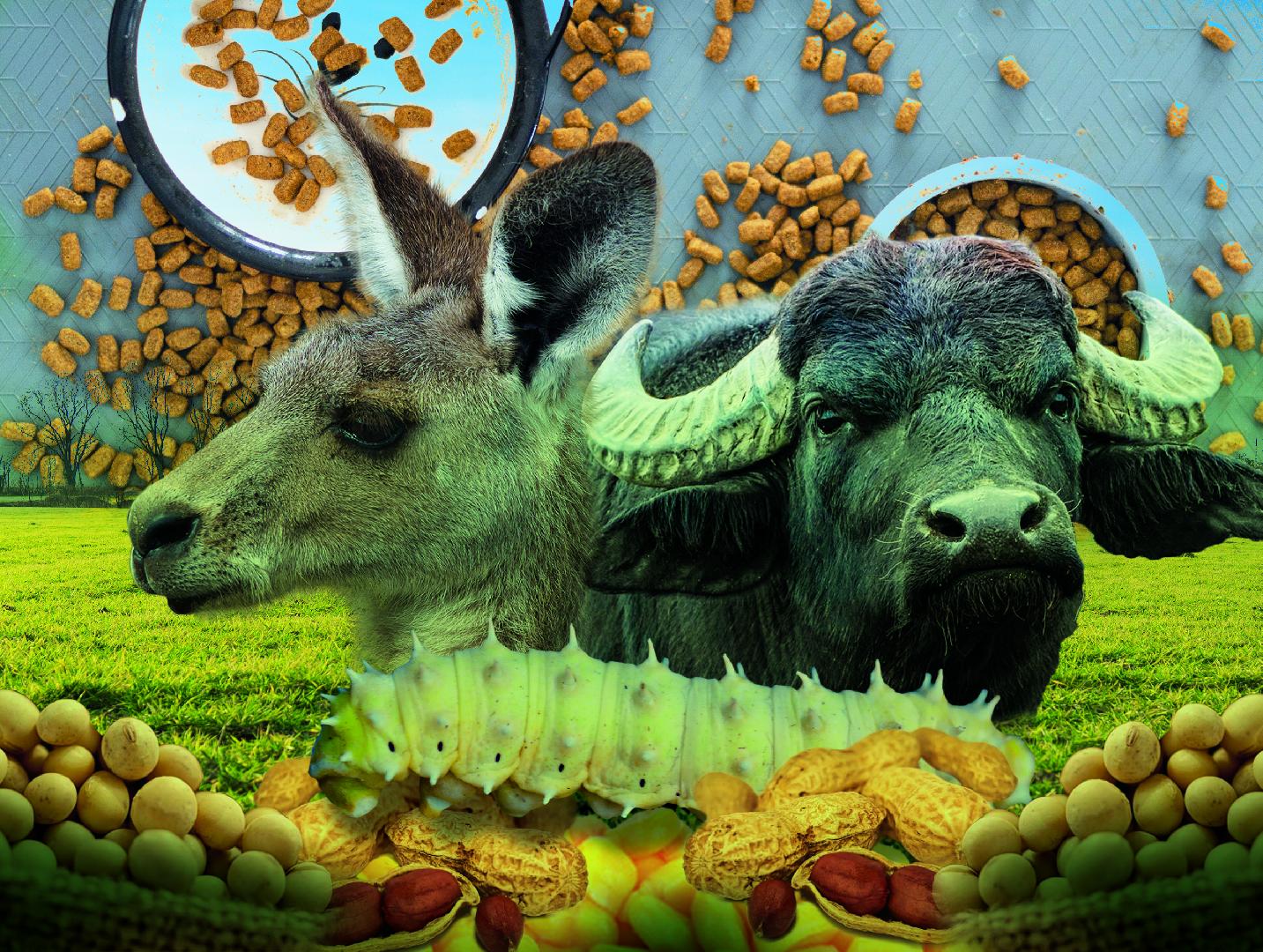 Ingredients
Ingredients
4+ MIN
29/11/2022
Por María Candelaria Carbajo
New by-products for the pet food industry
Within the by-products category, we can find animal-grade ingredients that, if not used for the pet and animal food industry, would go to waste. In this sense, by-product meat use allows each piece, which would be waste, to be used efficiently, as long as it contributes positively to livestock and pet feeding. However, some by-products may not come from the meat industry but they are also a possible waste that, if the right way to use them is found, can improve the cyclicality chain of connected industries. Non-meat by-products under review Soybeans, corn, and peanuts While cat and dog owners want brands to reduce resource use and environmental impact, they also reject all by-products as not being considered human-grade. If we talk about non-meat by-products, we find protein from oilseeds and cereals from soybeans, corn, and peanuts. These have traditionally been used in pet foods as sustainable, inexpensive, protein-rich ingredients. However, the ongoing demonization of soy and corn-based ingredients hampers their use in pet food and snack formulations. In this sense, as an industry, we must work to keep on demonstrating the quality of protein and nutrient composition so that, little by little, they become accepted ingredients in pet food and treats. Evidence Diverse investigations and studies have tested the digestibility of amino acids in by-products in soybean flakes, peanut flour, soybean flour, and corn gluten flour. Pet food ingredients have been shown to contain a generally essential amino acid profile. Some of the conclusions are: Only peanut flour showed a low lysine index. Soybean and corn gluten flour had the highest amino acid digestibility. Compared to the values recommended by the American Association of Feed Control Officials (AAFCO), the most limiting amino acid for adult dogs was lysine in peanut and corn gluten flour. For soybean flakes and flour, methionine was the limiting amino acid. For adult cats, the main limiting amino acid was lysine in peanut and corn gluten flour, while threonine limited soybean flakes. Finally, soybean flour did not present any limiting amino acids for cats. In general, these high-protein, high-fiber, low-fat composition ingredients are said to be easy to incorporate into pet food formulations. In addition, its varied amino acid compositions offer the opportunity to combine them to create complementary proteins that meet the nutritional requirements of dogs and cats. Meat by-products Water buffalo Today, most water buffalos live in Asia, where they have been domesticated. These animals provide milk, meat, leather, and labor. And, just like with cattle in the rest of the world, farming them results in by-products that humans can't or won't eat. Water buffalo by-products, such as horns, lungs, and udders, can serve as novel ingredients for dog treats and chews, achieving a social benefit while reducing environmental impact. Kangaroo Kangaroo seems like a new ingredient for the industry, but the truth is that dogs have eaten marsupial meat and co-products for thousands of years. But if we are talking about kangaroos properly, few have had the opportunity. Nowadays, some brands are testing the use of kangaroo, such as viscera, heart, lungs, and liver, as well as some parts not preferred by humans, such as tail bones. Silkworm pupae In Taiwan, an agricultural research station developed a means of using silkworms in cat food. Tests are being done on silkworm pupae after harvesting the cocoons for silk production. The cats that fed on canned food based on this insect presented less odor in their defecations and shiner fur. The director of the research station noted that silkworm pupae contain natural antimicrobial chemicals, proteins, fats, carbohydrates, chitin, and omega-3 fatty acids. At a later instance, the technology developed at the research station was transferred to a biotech company to test mass production. Tuna bone The Thai company Thai Union Group PCL introduced a new product made from the by-product of tuna bones to the pet food market. This by-product would bring great benefits to bone health when consumed as a supplement in capsules or tablets or added to different types of food as an additive. By-products hold great potential The pet food industry represents a strong, growing, and robust global economy. However, as the market continues growing and expanding, it will create more waste and increase its negative impact on the ecosystem unless we, as an industry, do something about it. As the large sector that we are, both locally and internationally, we have the responsibility to seek alternatives to improve industry cyclicality, as well as to educate decision makers with kindness and scientific information when it comes to buying pet food products. Source: All Pet Food
 Extrusion
Extrusion
4+ MIN
28/11/2022
Pet Food: High quality cuisine for your pet
Pet food ingredients GEA technology plays a vital role in the preparation of high-quality ingredients for pet food. Microfiltration and ultrafiltration are used for the purification, fractionation and concentration of essential pet food components and flavorings from meat and plant extracts. Nanofiltration is sometimes incorporated to achieve better separation and concentration of key ingredients. The integration of reverse osmosis and evaporation provides an energy efficient, optimal dewatering step to prepare purified ingredients for economical spray drying. Manufacturers need to create ingredients of high quality with specific flavor characteristics. To meet these requirements our spray dryers and FILTERMAT® dryers are designed to operate at low temperatures, with a wide range of products, even those containing high concentrations of oils and hydrolyzed proteins, while preventing product deterioration during processing. GEA spray dryers produce powders that are optimized for extruded or pelletized products. Meat preparation technology for wet, dry and raw pet food Whether you need an automated meat preparation line, or a single machine that offers flexibility and versatility in batch production, GEA has the technology to help you. We have dedicated equipment for grinding, mixing, batching and handling. And equipment that combines cutting, mixing and emulsifying in one. This is complemented by automation and packaging solutions in line with the latest retail trends. Dry pet food extrusion The deep knowledge of technologies and processes learned from the world of food combined with the trend of humanization that is spreading in the world of pet food has led our technicians to the development of cooker extruders able to produce products with the highest levels of digestibility and nutrition. Our cooker-extruders combine the delicacy of cooking in a vaporization tank with the power and sanitization of the heat treatment of the extrusion, allowing us to obtain products that meet the most stringent quality requirement. We design and manufacture tailor-made extrusion lines for the production of any kind of dry pet food such as kibbles, pillows and various kind of treats. Our flexibility and knowledge of technology allows us to offer machines with high production capacity, solid and durable and able to adapt to any new product development or market need. Freezing solutions for pet food Before freeze drying the raw meat, cooked meat or kibbles need to be frozen. This is done by using Individual Quick Freezing (IQF) technology developed by GEA. Our full line of IQF tunnel freezers are designed to provide your bulk product with superior frozen quality. They are characterized by hygienic design, high yield and minimum energy consumption. The full and gentle fluidization during the freezing process ensures safe product handling and preservation of the product shape, colour and texture. IQF tunnel freezers can be configured to match the specific pet food application and customer requirements so that they are perfectly integrated into the processing line for pet food production. Freeze drying solutions for pet food Freeze drying is a form of dehydration in which pet food has its intrinsic moisture removed through sublimation. This preserves the overall structure and size of the final product, including its vitamins, proteins, flavors and colors. GEA scope of supply includes processing solutions for a variety of pet food products including freeze dried raw meat, cooked meat, kibbles, snacks and treats. The freeze-drying technology for raw pet foods allows them to keep their original properties, texture and uncooked appearance. GEA's RAY™ technology a highly efficient and economical batch freeze drying process. It has negligible power loss (less than 0.1%), low energy consumption, uniform drying, high sublimation capacities and a modular design. Small RAY™ cabinets can be de-iced in just 10 minutes whereas larger units benefit from the GEA's Continuous De-Icing System (CDI) to further reduce downtime. Pet food packaging solutions Packaging plays a critical role in the distribution, preservation and presentation of pet food. Differentiating your product on the shelf can be as important as the product's taste itself. GEA offers thermoforming equipment and vertical form fill and seal equipment that helps you meet today's operational challenges such as variety, process flexibility, uptime, reducing the cost per kilogram and per pack, food safety and the environment. Start to finish pet food solutions Whether you need a single machine to boost existing line performance or a complete solution for a new factory, GEA is the right partner for you. Multipurpose line for extruded dry pet food We design and manufacture tailor-made extrusion lines for the production of any kind of dry pet food such as kibbles, pillows and various kind of treats. Our flexibility and knowledge of technology allows us to offer machines with high production capacity, solid and durable and able to adapt to any new product development or market need. By GEA Source: All Pet Food
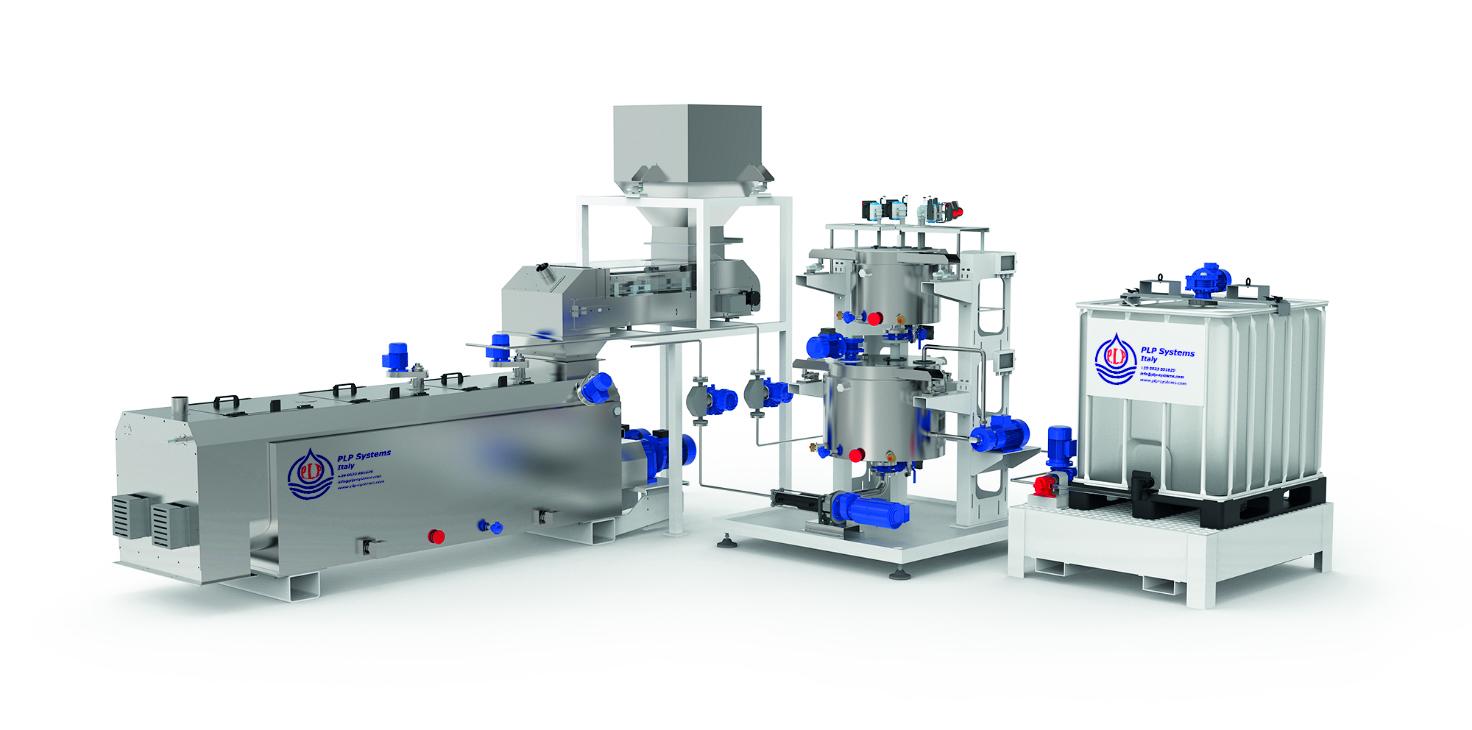 Coating
Coating
2+ MIN
24/11/2022
Continuous Coating: High retention time
The coating of pet food croquettes is an important phase of the process, as the external covering of a croquette is the initial contact with the animal as well as the main point of reference that the customer will trust. The coating phase must be carried out to: Obtain color homogeneity in all croquettes Reduce oil loss and greasy look and feel Improve the distribution and homogeneity of palatant and flavoring additives. Reduce disinfection problems in the coating process CONTINUOUS COATING BENEFITS Pro: High-level of homogeneity (CV) can be obtained even with the addition of low amounts, being more flexible and kind with the production and the product itself. Requirements for a successful application: Performing croquettes dosing: The dosage must be carried out using continuous gravimetric weighing systems, not volumetric. The variation of the incoming product flow must be adjusted and stabilized by the proportioner to have a uniform output. Covering: The team must be as gentle as possible with the product but should also guarantee good mixing homogeneity. The retention time is essential when high amounts of oils are added, and should not be less than 60 seconds. Atomization: Continuous atomization is a real challenge, especially when the product flow varies. Standard nozzles are always exposed to dirt and blockages. PLP recommends SMOG Technology for perfect atomization in any condition and viscosity. *Typical diagram of a continuous coating installation In addition to the points mentioned above, there is another very important factor during the coating process, which will result in a more homogeneous final product: HOLDING TIME Homogeneity is also related to the absorption of fat by croquettes. As for the process, this can be increased thanks to the combination of heat and croquette retention in the mixing phase in the covering. The MT series is equipped with heating chambers that maintain a controlled temperature inside the machine, while the retention time is increased by: Adjustment of the angles of the vanes Adjustment of the speed of the rotary axes Internal shock absorbers RETENTION GATE PLP has developed an automatic check gate, located at the outlet of the machine. It is suitable for stopping the croquette flow and releasing it when product accumulation reaches a certain level inside the machine. Thus, it significantly increases the retention time, up to 180 seconds inside the MT machine. For more information visit the PLP Systems WEB or contact this EMAIL. Source: PLP Systems
 Laboratory
Laboratory
3+ MIN
23/11/2022
US startup aims to transform pet food with lab-made chow
Most pet food includes animal protein, which requires the slaughter of animals and is ultimately a source of planet-warming gases. Rich Kelleman's Colorado-based Bond Pet Foods, however, is aiming to sidestep both pitfalls by making those same proteins in a biotech process.
His inspiration comes in part from his own disgust over the treatment of livestock on its way to the food supply. He was also shocked when he read a study showing that pets in the US consume as many calories sourced from animals as France's population, which numbers more than 65 million.
Livestock's impact on climate change added to his resolve, as raising animals for food is responsible for a whopping 14.5 percent of human-linked greenhouse gas emissions, according to UN data. But vegetables alone aren't necessarily enough nutrition for cats and dogs.
Kelleman was convinced by research that if a company could 'crack the code' for lab-grown pet food there would be a market for it. 'For dogs and cats, it has to be palatable, but it doesn't have to look like a fully formed steak or breast,' Kelleman told AFP during a visit to the startup.
'It's not about the mouth feel; the sizzle; the taste, and the texture that have to be so precise for people to embrace it.' In development, Kelleman's startup drew blood from a pedigree chicken, extracted DNA from the sample and inserted it into a microbe.
The resulting microbe was added to a fermenter to produce lab-grown animal proteins. 'It sounds like a weird, strange process, but it is something that has been around for quite a while,' Kelleman said.
– Nutty, with a hint of cheese –
His dog, Rumples, seems to enjoy it. And an AFP reporter given a sample noticed its nutty flavor that includes notes of parmesan cheese. But the company has many hurdles to cross in its quest to become the new normal in pet food. First is the price, because even environment-loving 'dog moms' watch their budgets when it comes to the cost of kibble. Using fermentation tanks has enabled Bond to cut the cost of protein to $5 per kilogram (2.2 pounds) from $100 per kilogram.
Chief technology officer Tony Day says the price can be driven even lower. It is expected to take at least two years, though, of tests and evaluation to assure regulators that the kill-free pet food is a safe and viable. Bond is aiming to sell their proteins to pet food makers by the second half of 2023.
A crucial question is whether the lab-grown pet food passes the smell test with humans concerned about the well-being of their animal friends. In a park not far from the startup in the Colorado city Boulder, dog owners were interested but wary. 'I'd like to think I could give my dogs real meat protein without harming the planet,' Rochelle Loughry said while watching her two Australian Shepherds.
'In theory it looks good, but we should know if, in the long term, the benefits are the same as with real meat,' said another dog owner Jason Ackermann. Meat in pet food often arouses fierce debate. Greg Okin received raging criticism from both conservatives and animal rights activists for his academic study of pet protein consumption, which helped inspire Kelleman's startup.
'I think the fear was that I was telling people kill their cats and dogs, or not feed them, which is not what I was saying at all,' said Okin, a professor at the environment institute at the University of California, Los Angeles.
'I got a lot of hate.'
Julie JAMMOT
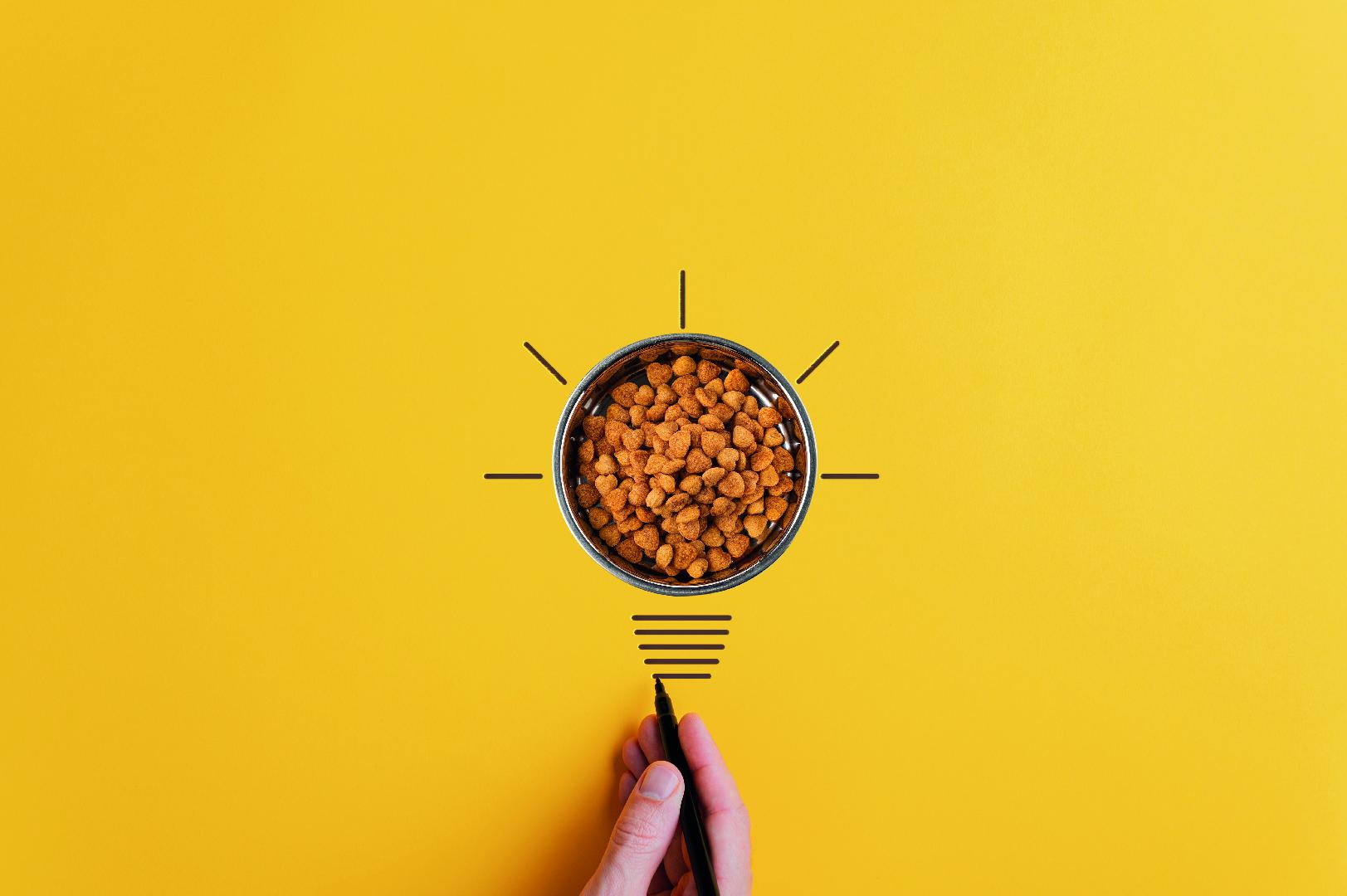 Micro Ingredients
Micro Ingredients
4+ MIN
22/11/2022
Por Armando Enriquez de la Fuente Blanquet
How can we innovate in the pet food industry?
According to the Dictionary of the Royal Spanish Academy (RAE, for its acronym in Spanish), the word innovation refers to the creation or modification of a product and its introduction to the market. Nowadays, there are a lot of pet food brands striving to attract consumers to buy their 'innovative' foods. Looking at this effort to attract pet owners' attention, we find products with characteristics such as: grain-free, breed-specific, healthy properties, original diets, exotic ingredients, fresh ingredients, and the like. To develop an innovative product, it is necessary to define the category and the coverage, know the latest market launches (graph 1) and investigate the consumer. Graph 1. Main global health claims by region (% of launches) (last 12 months, ending 3Q2021) If we see the graph to analyze the declarations shown in the products launched to the market in a year, we observe that two categories stand out: clean labeling, a trend of human consumption, and the health issue, which is worth mentioning the importance of protein content, as well as its source. When we investigate the consumer, we should ask ourselves: what is the pet parent looking for in the purchase? Market releases largely answer this question, but my answer would be: pet performance! Pet performance should be seen by their parents with a naked eye, which means: the pet enjoys the food (palatability), looks healthy (hair and feces quality), understands the commands of their parents (improved cognition), is always alert to interact (energetically), and last but not least, their see the pet happy! In many cases, innovation is strongly linked to creativity, discovery, and invention. Therefore, a creative process is necessary to make changes that involve introducing something new. Pet food innovation can range from modern packaging, either to maintain a nutritional value or improve sustainability, which can contain: high-quality ingredients (human-grade), superior shapes and textures (state-of-the-art manufacturing processes), connection with the pet owner (breed, age, health benefits, simple and clear information), meet a pet need (nursing homes, active dogs), special ingredients (protein source, probiotics, prebiotics, organic minerals), and the like. One way to innovate is by optimizing nutrients to provide an extra nutritional value beyond the basics. We should remember that pet performance is achieved when they have nutritional precision, which is achievable with the use not only of correct nutrient levels but with high-quality raw material sources selection. This makes food more digestible, more bioavailable, safer, and, above all, guarantees that the nutrient reaches the pet's mouth in the precise amount. Saying "vitamins and minerals" requires us to take care of micronutrient sources to ensure that a portion of food contributes to what a pet needs. There are commercial presentations of vitamins in crystals, spray-drying, microspheres, cross-linked or armored, and each of the above has different stability and bioavailability. Making a good choice will allow us to guarantee that statement. On the other hand, there are also different trace minerals sources. They range from inorganic minerals (sulfates or oxides, which have a high reactive power due to their high solubility, and therefore, are capable of binding or degrading other nutrients in the diet) to organic minerals or hydroxy-minerals sources that are more bioavailable, less reactive and that favor food consumption. In the quest to provide better pet health, science-based ingredients must be used to guarantee the performance that the pet parent is looking for. For example, when talking about strengthening the defenses of the dog or cat, one way is to support the immune system through the correct contribution or combination of biological antioxidants to the dog or cat's body, such as vitamin E, vitamin C, carotenoids, polyphenols, etc. Another way to stimulate the immune system is through polysaccharides consumption, such as beta-glucans that will help activate macrophage receptors. When we affirm skin health, we are offering external health, which is a sign of integral health indirectly, since any pet owner will observe it with a naked eye, not only for the love of their pet but because they will show a healthy coat (shiny and strong hair). In this case, there are different tools or strategies to achieve optimal skin and coat quality, as well as the use of adequate vitamin H (biotin) levels beyond nutritional needs, the inclusion of highly bioavailable sources of trace minerals such as zinc, copper, or manganese, or working with adequate levels and reliable sources of DHA-omega-3, whether of animal (fish) or plant (seaweed) origin. One statement well associated with pets' integral health is nutritional value focused on joint health. In this category, some ingredients have a certain chondroprotective function and, in addition, can offer an anti-inflammatory benefit to the joints, such as glucosamine, chondroitin, type I and type II collagen, DHA-omega-3 or egg hyperimmune proteins. To conclude, we can say that innovation is making great use of creativity, which means that we do not need a new process or ingredient, but what we already have correctly, efficiently, and always with the evidence that it will work for the pets benefit, and most of all, fulfilling the declaration that the pet parent is looking for. Fuente: Armando Luis Enriquez
 Cats
Cats
5+ MIN
18/11/2022
Gut Feelings: How to Balance Your Pet’s Microbiome
Over the past few years, no connection — with the expectation of maybe Tom Brady and Rob Gronkowski — has gotten as much attention as the one between your mind and gut. Not unlike the championship duo, each heightens the wealth of the other, as well as the success of their system. If you've ever had a 'gut feeling' or felt butterflies in your stomach, you've experienced a limited version of this relationship. Inside every stomach is a mini-ecosystem — trillions of microbes and healthy bacteria that live in your gut producing neurotransmitters such as serotonin, dopamine, and GABA — that plays a key role in physical and mental health by regulating mood and cognition. However, the organic phenomenon that is the 'gut microbiome' is not reserved for solely humans — your pet endures the same subtle experience within their body every day as you do. Trillions more organisms (including bacteria, viruses, and fungi) also call your pet's digestive tract home, working away to break down food and generate essential nutrients. 'The sheer number of organisms in a healthy gut is tremendous; any one of us has more organisms living in our GI tract than there are people on the face of the earth,' says Dr. Audrey Cook, a professor at the Texas A&M College of Veterinary Medicine & Biomedical Sciences. 'Although we used to think that those bacteria were just along for the ride, we now know that they play a key role in maintaining health.' Scientists have yet to discover the gut microbiome's full impact, but they do know that it plays a large role in a pet's overall health and well-being, impacting GI tract function, nutrient absorption, immune status, body condition, and many important hormonal responses. What is Intestinal Dysbiosis? A healthy pet's microbiome can be compared to an ecosystem, such as a coral reef or rainforest, where organisms work both independently and in relationship with each other. Unfortunately, many things can disrupt this complex system of microorganisms. When that happens, it's called dysbiosis. In simple terms, dysbiosis occurs when a cat or dog's gut microbiome becomes imbalanced due to the loss of beneficial bacteria or the emergence of bad bacteria. 'These disruptors include many medications, particularly antibiotics; infection with GI tract pathogens; changes in diet; anesthesia; stress; and starvation,' says Dr. Cook. 'It can take a long time for the microbiome to return to normal after an upset.' Over-treatment with antibiotics is one of the most common causes of intestinal dysbiosis in pets. Dr. Robynne Chutkan, one of the leading gastroenterologists in the country and the author of The Microbiome Solution, shares these concerns. 'The public still sees antibiotics as the life-saving miracle workers they were in the first part of the last century, not as the overprescribed menace they're becoming,' she says. 'We're seeing the emergence of new 'modern plagues,' not just from infection, but from not enough microbes.' The consequences of dysbiosis go beyond the gut. Health conditions linked to changes in the microbiome span the body and include allergies, inflammatory bowel disease, obesity, diabetes, and kidney disease. Though the full impact of dysbiosis is still unknown, there are a variety of symptoms that can occur because of the condition. 'Dysbiosis in pets can result in weight loss, bloating, flatulence, poor appetite, and changes in stool consistency, such as diarrhea,' says Dr. Cook. 'Some research in other species suggests that an abnormal microbiome may also contribute to numerous non-GI disorders, including obesity, mental illness, and type 2 diabetes.' Finding the Right Balance for Your Pet To avoid the effects of an unbalanced microbiome, there are several ways for pet parents to foster a healthy community of gut microorganisms in their pets. 1. Limit unnecessary antibiotics. Both Dr. Cook and Dr. Chutkan recommend avoiding the unnecessary use of antibiotics, because even a short course of antibiotics can have a big impact on their gut microbiome. Antibiotics are prescribed to kill bad bacteria that cause illness or infection, but they also kill good gut bacteria in the process. 'Dogs tend to go easy on the hand sanitizer and antibiotics and eat a less processed diet (all habits worth emulating),' says Dr. Chutkan. Ask plenty of questions and follow your veterinarian's recommendations. 2. Nutrition is key. The food choices you make as a pet parent can have a huge impact on your pet's health. Commercial dog and cat foods contain the essential nutritional building blocks of carbohydrates, proteins, and fats, but there are a plethora of superfoods that can give your pet an added health boost. 'Feeding a consistent, high-quality diet is also helpful, and we certainly want to avoid introducing pathogens such as Salmonella by feeding [certain] raw foods,' notes Dr. Cook. 3. Probiotics offer benefits. Probiotics are live, good microorganisms found in some foods and supplements that can contribute to a healthy gut microbiome. Some ways probiotics can improve your pet's well-being include: Aiding digestion Boosting the immune system Preventing and managing diarrhea Promoting overall intestinal health Reducing inflammation Adding 'good' bacteria Many pet products claim to contain probiotics, but pet parents should consult with a veterinarian before choosing one of these options, as some are poorly researched. Similarly, some commercial pet foods contain prebiotics, such as soluble fibers that feed good bacteria, but there is only limited evidence of these foods effectively improving the health of the gut microbiome. 4. Live dirty and skip the groomers. It's not just okay to be a little sweaty and dirty; it's actually great for you and your pet's microbiome and overall health. 'We need exposure to dirt and germs (bacteria, fungi, protozoa, etc.) to train our immune systems to recognize friend from foe,' says Dr. Chutkan. 'Not enough exposure to germs, especially when young, leads to a confused immune system that tends to overreact. The result is allergies and autoimmune diseases.' While feeding your pet and giving medications, pay attention to the effect they may be having on the gut microbiome. Though an altered microbiome can have negative consequences, a GI tract full of good microorganisms can be the key to a healthy pet. BY DANIELA LOPEZ
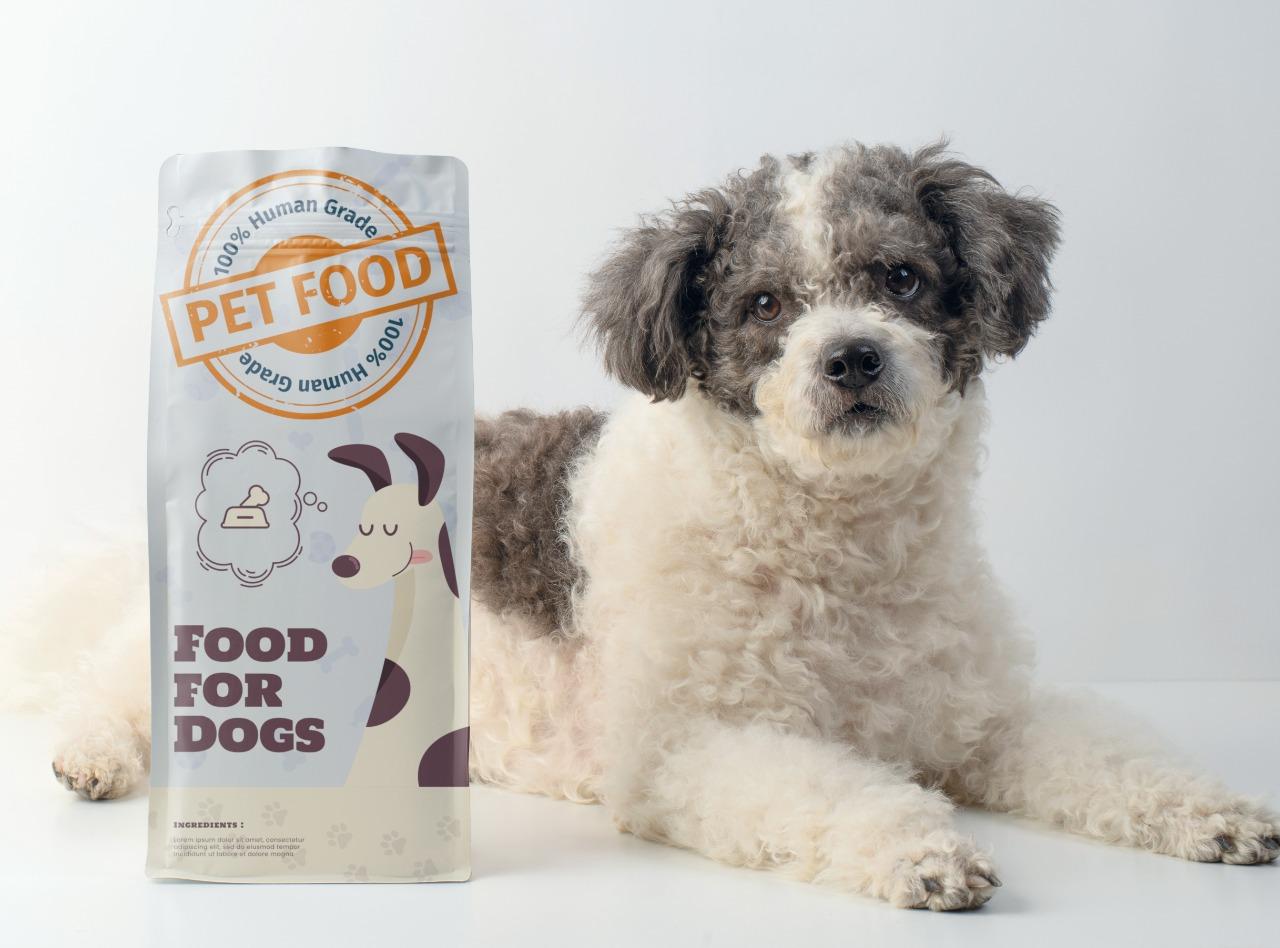 Trends
Trends
6+ MIN
17/11/2022
Humanization and premiumization of pets on an industrial scale
AAFCO (Association of American Feed Control Officials) makes it very clear the term Human-grade is not edible for humans and that it´s closely related to the conditions in which they are manufactured, the packaging used and that the raw materials are very close to federal regulations for the production of food for human consumption. The organization also emphasizes that not everything that a human consumes is safe for your pet. First of all, it´s important to understand the real meaning of humanization in pets, and this is closely related to the natural expression and as a permanent trend that our pets today are considered members of our family. Also their owners already treat their pets as children and consequently, we humans are increasingly receptive to using products for our PETs similar to those we use for ourselves. This consumer profile, which is growing absurdly, is looking for premium, high-quality products, which are healthy, highly nutritious and improve the living conditions of their pets. I personally compare human-grade PET foods to electric cars. Although the value of electric cars is high, there are consumers who pay for these kind of vehicles. Most manufacturers in this category of vehicles are expanding, to the point that almost all brands already produce electric cars and prices are becoming more competitive and accessible because there´s more supply and demand is growing steadily . For human-grade PET food it´s the same, there are few companies that produce it and its prices are not cheap at all, but it´s expected that industries in the sector take a close look to these opportunities, and many are already investing in conditioning their factories to produce pet foods as if it were human food. North America is responsible for almost 50% of world sales of 100% human grade pet food and this is largely due to the fact this market was driven by the expansion of consumer knowledge about the positive influence on the health of their pets. When we talk about pet food, just two categories of food quickly come to my mind: Dry extruded food and Treats (wet, semi-moist, dehydrated, freeze-dried, cookies, dental, etc). When we refer to dry extruded foods, we highlight extruders, dryers, counter-flow coolers, grinding mills and coating systems for liquids. Now, when we talk about treats, the picture changes in a great extend. I recommend that, if you are going to produce treats, it´s better to start by choosing the types of products you are going to produce instead of choosing the machines first, otherwise, you´ll have to adapt to what the machines do, and not always it´s exactly what you want to produce, or what the market request. The machines, processes, raw materials and even formats in treats, varied and new products appear every day. In dry pet food there is not much variation. Mini Jerky based on salmon (50%) protein Cat food using fresh meat (45% protein) – produced in twin screw extruder Soft Treats with 85% meat - Human-grade quality Treats 100% Human-grade – Jerky 100% beef To produce human-grade pet food, one of the main characteristics is to use fresh raw materials and this means their shelf life is shorter. Dry extruded foods usually last around 12 months. Starting from this point, it´s already a challenge to offer the market a product (without preservatives) with a shorter shelf life. Another challenge to produce human-grade food is to develop an adequate facility to process certain raw materials, even more so if they are fresh and have a high percentage of moisture. In the United States, there are few companies that have been approved by FDA (Food and Drug Administration) and that their facilities comply with the human grade process. This means for industrial pet food factories, using the term Human-Grade on their packaging is not for everyone. If you still have no idea of what a pet food factory dealing with human-grade pet Food would look like, think of a sausage factory where there are stainless steel mixers, industrial cold chambers for meat blocks, stainless steel emulsifiers, shiny floors, all employees with gloves and face masks, stainless steel bench tables for handling products, low ceiling, stainless steel packaging and transport system, etc. Above this, you have to check if the ingredients used are human grade. Many companies buy raw materials with Human-grade and GAP (Global Animal Partnership) certifications. The challenges don´t end there, achieving good palatability with fresh food is not easy. When we make dry extruded foods, we have endless enhancers that enhance flavors and aromas, but when we talk about human quality, this is already ruled out because it automatically loses its human quality essence. And, last but not least, the packaging and labeling system at a human quality level. For this reason, FDA has gone so far as to list humane-grade pet food requirements within its Code of Federal Regulations (21 CFR – Title 117). Perhaps now, we can better understand why the United States accounts for nearly 50% of all human-grade PET food produced globally. Apart from this, the government bodies are so demanding that, in a certain way, they have transformed these companies into factories that really offer a high quality food and there is no doubt pets receive a super nutritious food and that improves their health. I believe the most important thing is the local consumer has realized the pet food industry has been revolutionized and today brings a high quality product. Recently, I´ve visited several supermarkets and pet shops in the United States, and in all the points of sale, I have found a wide variety of human-grade pet foods that vary between 08 to 40 dollars. But the question that we ask ourselves now, despite the fact that the path outlined is not easy at all, why do we need to produce human-grade pet food? The answer is, demand is increasing, pet owners are looking for this and can pay for it. Applying this to our reality, we realize that in our countries we don´t have these governmental bodies that require us and determine how to make human grade pet food, and even more, place 100% human grade food in the packaging, or that the raw materials are in the condition of human consumption. If companies want to choose to produce this type of product, it´s essential to highlight the following principles: Transparency, honesty and commitment to animal health. If the industry takes a decision to produce much more premium foods, you can start with producing extruded fresh meat based foods using twin screw extruders. In this sense you´ll be familiar at working with blocks of frozen meat, which is later grinded, emulsified and injected into the preconditioner of the extruder. The percentages of meat can vary from 25 to 70%, and depending on the extruder you can that increase that percentage. Functional or natural ingredients such as fruits, vegetables, whole grains, glucosamine, prebiotics and probiotics are already part of human-grade foods. Many dehydrate fruits and vegetables are grinded and use it as part of ingredients in formulations. Despite the fact very small amounts of these raw materials are still used, the marketing department places great emphasis on this and places a certain emphasis on such functional ingredients in its packaging. Again, here you already start to get familiar with using other types of ingredients. These ingredients can also be used in treats or snacks for dogs and cats. Dehydrated and freeze-dried foods are gaining more and more prominence in these categories and it can be said they are human grade food. We can´t leave behind Puree Cat Food, a kind of food cats love. I consider it´s very hard to adapt a dry pet food extrusion factory and transform it into a human grade pet food plant . The ideal would be to start a project fromthe very begining, thinking about new conditioned environments and take into consideration all the points that I ´ve stated in this feature. Personally, I would call this "Sustainable Innovation Disruption" because we are going to produce a better performing product to sell it with more benefits to our best customers. Take into account maintaining innovation is a strategy widely used by companies already successful. This success is not so easy to keep and only those who apply Disruptive Innovation can achieve it. Keping a disruptive mentality in the pet food market means aiming to create good products who attracts customers in low-cost market segments and new markets (Low-end and New market), which can´t affect customers who pay for premium food or who expect better quality. Fuente: Oscar Diez
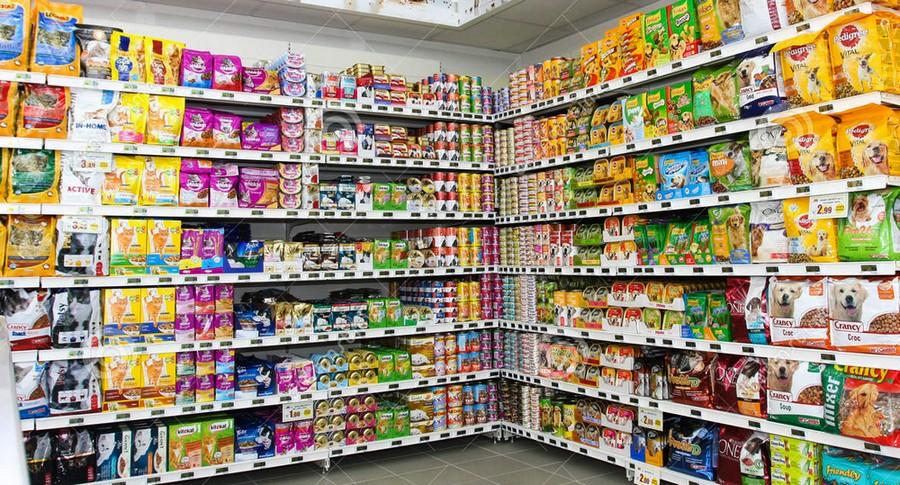 Market Information
Market Information
4+ MIN
16/11/2022
The Italy Pet Food Market is projected to grow at a CAGR of 4.2% during the forecast period (2022-2027).
According to the National Association of Manufacturers for Food and Care of Companion Animals (ASSALCO), roughly half of all Italian households include either a dog or cat. Pet owners in Italy increasingly consider their pets to be part of their families, to the point that their presence influences several aspects of their lives, such as the holiday decision-making process. Italy spends far less on pets than other developed countries. In fact, Italy is amongst the bottom four in terms of expenditure per pet in the developed world, ahead of only the United Kingdom, Taiwan, and the Netherlands. The main driver for the market is the humanization of pets wherein human characteristics are ascribed to pets and they are treated similarly. This trend resulted in an increased focus on pet health, nutrition, weight, and overall wellness. Scope of the report Pet Food is the animal feed that is commercially prepared, intended for consumption by pets, Italy Pet Food Market is segmented by Product Type (Dry Food, Wet Food, Treats/Snacks, and Others), By Animal Type (Dogs, Cats, Birds, and Others), & By Distribution channel (Specialized Pet Shops, Supermarkets/Hypermarkets, Online Channel, and Other Channels).The report offers the market size and forecasts in terms of value in USD million for all the above segments. Key Market Trends Humanization of Pets According to the National Association of Pet-Food and Pet-Cared Care Companies (ASSALCO), there are around 60 million pets in the country, with a dog population of 6.9 million, dogs are the second most popular pets in the country accounting for 46.5% of the pet food market. Cats, with a population of 7.4 million, dominate 53.5% of the market. The number of pets in Italy has been on an increase in recent years. It is also anticipated that approx 43% of Italians own at least one pet. Modern Italian families increasingly have pets for companionship. This new role is a result of Italy's changing demographics, family structure, and general regard for animals. As said above, the increased number and importance of pets translates into greater care and into higher expenditures for food, health, accessories, and services. The latest industry figures indicate that the Italian pet food market's growth potential remains significant. According to studies, this is because 60% of Italian pet owners feed their pets with commercial pet food, rather than homemade food or leftovers. Highly Regulated Pet Food Import According to the International Trade Centre (ITC), France, Germany, Thailand, and Hungary are the major exporters of pet food for Italy. Import in terms of value is significantly increasing in the Italian market from USD 611,487 thousand in 2017 to USD 683,710 thousand in 2019. Pet food is highly regulated in the European Union to conform to the highest standards of hygiene, safety, and quality. In the European Union, pet food is subject to feed marketing legislation and veterinary legislation. Its feed marketing legislation covers food for pets as well as feed for food-producing animals. Accordingly, Pet food products containing an animal origin ingredient must be sourced from approved establishments and have to be accompanied by a veterinary certificate. All exports of pet food to the European Union must comply with European Union requirements including rules on labeling, hygiene, animal health, certification, and the use of additives. The pet food exporters must verify the full set of import requirements with their European Union customers. Final import approval is subservient to the importing country's rules as interpreted by border officials at the time of product entry. Competitive Landscape The major companies in Italy's pet food market are Coop Italia, Mars, Nestle, Colgate- Palmolive, and Archer Daniels Midland (Neovia). The top five grocery retailers only account for one-third of the market, with the largest share going to Coop Italia. Both multinationals and local companies are increasing their research and development (R&D) to provide more specialized products that accommodate the varying demands of pet owners. Specialist channels like pet shops and pet superstores have seen an increase in share, mainly due to an increasing consumer appreciation for super-premium products, which are often only available through these channels. Major Players Coop Italia Mars Inc. Nestle Purina Petcare Company Hill's Pet Nutrition Archer Daniels Midland Recent Development In June 2020, Nestlé Purina launched Pro Plan LiveClear, a breakthrough diet, which is the first and only cat food to reduce the allergens found on cat hair and dander across Europe including Italy. In March 2020, United Petfood acquired the Italian company, Effeffe Petfood, to strengthen its position in the country. Source: Mordor Intelligence
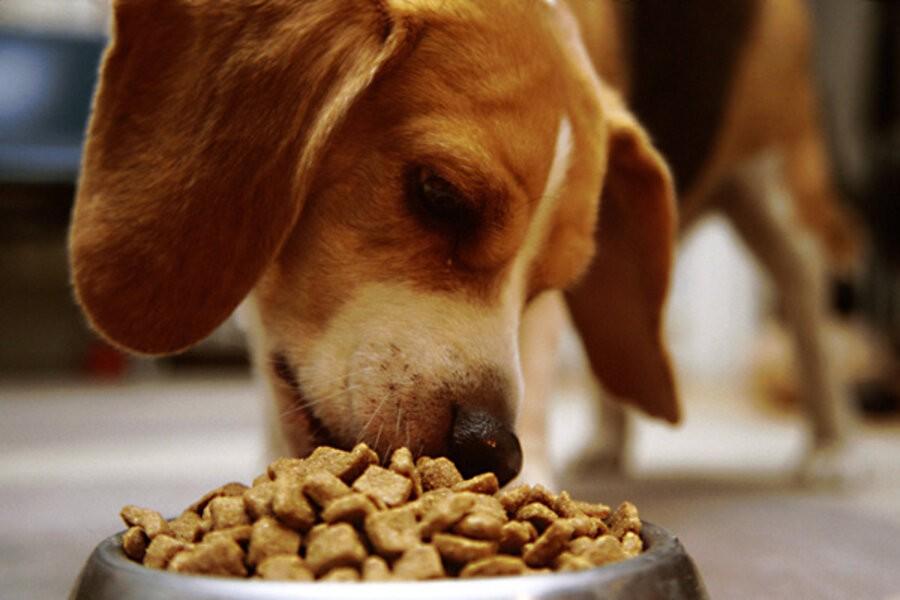 Dogs
Dogs
2+ MIN
15/11/2022
Most U.S. dog owners don't follow FDA pet food handling guidelines, study finds
A new analysis suggests that most U.S. dog owners are unaware of -- and do not follow -- guidelines on safe pet food and dish handling from the Food and Drug Administration (FDA), but that better education and implementation of the guidelines could reduce contamination. Dr. Emily Luisana of North Carolina State University in Raleigh and colleagues present these findings in the open-access journal PLOS ONE on April 6, 2022. Pet food and dish handling involves potential health risks for both dogs and people, especially those with compromised immune systems. Multiple outbreaks of bacterial illness among dogs and humans have occurred as a result of contaminated dog food. The FDA has issued guidelines on protocols for safe pet food and dish handling, available online, but the information is limited, and the effects of the recommendations have been unclear. To help clarify, Dr. Luisana and colleagues surveyed 417 dog owners. They found that less than 5 percent were aware of the guidelines, and many owners did not follow many of the recommendations. For instance, only one third reported washing their hands after feeding, and only two thirds reported preparing dog food on separate surfaces from those used for human food. The latter fact is of potential public health importance, but is not addressed in the FDA recommendations. To better understand the effects of the FDA recommendations, the researchers tested 68 household dog food dishes for bacterial contamination. After initial testing, they divided the owners into three groups with different instructions for implementing food handling guidelines, then tested the dishes again after 1 week. They found significantly reduced contamination of dishes from owners who instituted the FDA's pet food handling guidelines, either alone or in combination with the FDA's human food handling protocol, versus dishes from owners who were not asked to implement either protocol. The researchers note that their study was small and that future research could clarify optimal hygiene strategies and ways to communicate them. Nonetheless, on the basis of their findings, the researchers outline suggestions to reduce contamination in pet food dishes for owners, veterinarians, pet food sellers and manufacturers. These include ensuring household members who feed pets adhere to FDA guidelines and including written information on guidelines with pet food sales. The authors add: "Most pet owners are unaware that pet food bowls can be a hidden source of bacteria in the household. Knowing how to mitigate this risk and practice proper pet food storage and hygiene may make for a happier, healthier household." by Journal PLOS ONE.
 Extrusion
Extrusion
3+ MIN
11/11/2022
Benefits of meat treats and snacks for dogs
ANDESFOODS, produces food and snacks for pets that meet all the nutritional requirements, processes and quality standards that canines need, with 100% human-grade ingredients, that is, as a food for people would be produced. Within our developments , one of these products are toys, snacks and edible treats, made from meat. Its elaboration uses meat of natural origin obtained from the skin of bovines. Through a careful process we select our raw material verifying that its origin and suppliers are certified, guaranteeing a high quality standard. The rigorous cleaning, washing and drying process implemented in our plant avoids any risk of microbiological contamination. In addition, during all phases different quality controls are carried out that guarantee the safety of our products. The result is healthy and fun products, in various shapes, sizes and flavors that our pets love and also help them entertain themselves. In order to please all dogs, even the most demanding, we incorporate rich flavors and other ingredients that are commonly used in the production of food for human consumption, that are safe to be used in dogs as well, and that become in a very good option for our pets. Additionally, these snacks provide a series of benefits for our dogs and even for our relationship with them: Satisfies the instinct to chew: Canines have a great need to chew on objects, especially in the early stages when their teeth and gums are developing, for that reason we frequently find furniture, shoes and other belongings broken by bitten. To quench their instincts and prevent them from biting what they should not, snaks and meat treats are a practical and inexpensive solution for our dogs. Improves oral health: When biting, the meat exerts a mechanical effect on the teeth that helps to clean the tartar that is formed by the accumulation of dental plaque after eating food. Humans remove this plaque with daily brushing, however, this is an uncommon practice in pets, so it is necessary and helpful to use these chew toys to help their oral health. The use of baits, frequent dental cleanings at home (with veterinary toothpaste and brush) and regular visits to the veterinarian ensure good oral health for our pets. Reduces stress and anxiety: Some dogs develop stress and anxiety because they spend many hours alone or without attention from their love, for example while they work. Toys, snacks and meat treats are ideal for entertaining canines for hours, who are looking to devour the meat immediately. Just as when we give entertainment toys to children, we must take precautions and above all follow the recommendations of the manufacturers of treats and snacks for pets. It is recommended to choose the appropriate size, depending on the breed and age, the toy should be larger than the size of its muzzle to avoid choking. Additionally, it is recommended to discard if it has not been used within 24 hours, since being in the ground regularly, it may be subject to contamination. As we see, offering a meat toy to our dog can bring several benefits in addition to being a very fun option for our 4-legged friends! by AndesFoods
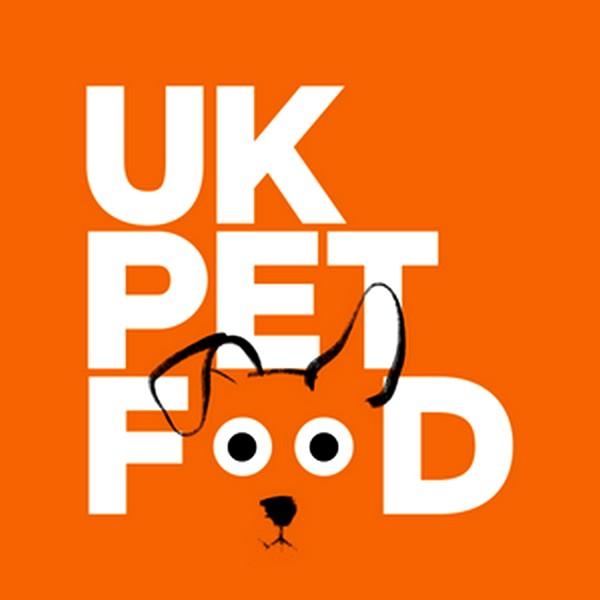 Market Information
Market Information
2+ MIN
10/11/2022
Pet food trade association adopts ‘UK Pet Food’ as part of its new identity
The Pet Food Manufacturers' Association (PFMA) has unveiled its new identity, UK Pet Food, to 'better' reflect the remit of the organisation. The trade association has over 100 members and represents 90% of UK manufacturers. The UK Pet Food branding focuses on a strong yellow core logo, which the association said reflects a desire to push the industry front and centre. It added that a suite of pet-specific sub logos exists to represent different species with their own contemporary colours, to reflect equality of representation across the different sectors within UK Pet Food. Additionally, UK Pet Food has expanded its membership to include affiliate organisations in the pet world, opening up opportunities for more networking, collaboration and training. UK Pet Food focuses on providing pet owners and professionals with information on wet, dry and raw prepared pet food and good nutrition. Michael Bellingham, UK Pet Food chief executive, said: 'Creating a new brand identity has been an important journey for us. We value our 50 years of history, but equally we pride ourselves on being a forward-thinking organisation, embracing change and driving it forward. 'We were keen for our brand to capture this feeling and better reflect who we are and what we are about. Our modern name and bright new look demonstrates our evolution, embracing new members and planning for the next 50 years.' He added: 'Our focus with the website was to simplify navigation to make it easier for users to find our expert-written material on pet food and nutrition. The design incorporates our new colours and ensures we are projected as the forward-thinking organisation that we are.' For more information please contact [email protected] or [email protected] By UK Pet Food
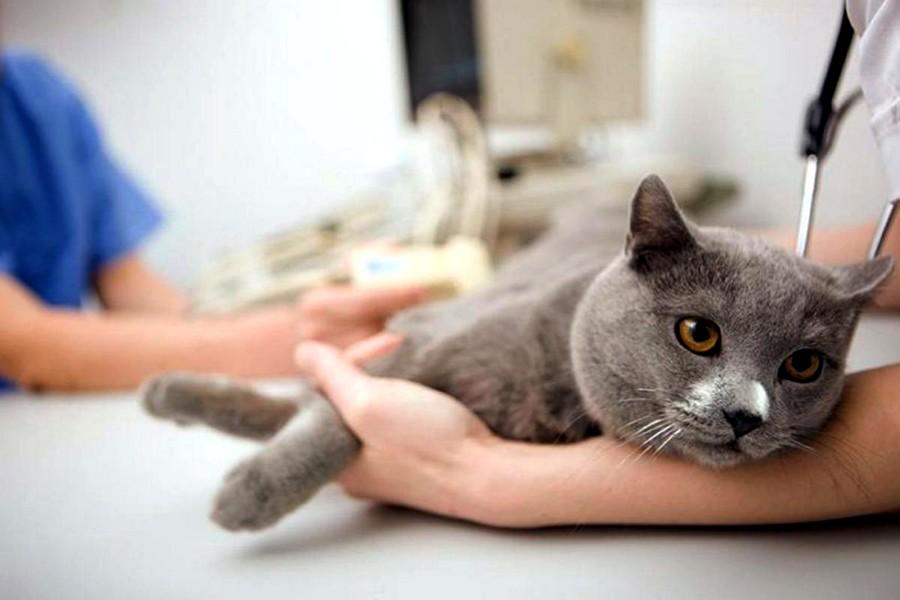 Cats
Cats
4+ MIN
09/11/2022
What is Feline Immunodeficiency Virus (FIV)?
Now, let's look even deeper into FIV, your cat's risk, and treatment for infection: Which cats are likely to be infected with FIV? FIV is transmitted primarily through bite wounds that occur in cat fights. However, other interactions between cats, like sharing food and water bowls or grooming tools, have not been shown to be significant in transmission. What are the clinical signs of FIV infection? A cat can actually be infected with FIV for a prolonged period before becoming noticeably ill. This period is known as 'viral dormancy.' In fact, this dormancy, or incubation, can be as long as six years! This means that FIV is generally not diagnosed in very young cats. When signs of illness start to surface, you'll likely see signs that the kitty just doesn't feel well: refusal to eat, weight loss, and lack of self-grooming. Most commonly cats will experience a severe infection affecting the gums, just around the teeth. Also, any wounds that occur could be quite slow to heal. The same is true for respiratory infections; they may linger much longer than would be normally expected. A cat with FIV might also struggle with persistent diarrhea. Ultimately, widespread organ failure can occur. How do we diagnose FIV? There is a simple blood test to check for exposure to Feline Immunodeficiency Virus. A positive test means the cat has been infected with the virus and will likely remain infected for the remainder of his or her life. A negative test may mean that the cat has not been exposed; however, false negatives do occur. Why would an FIV test have a false negative result? It may take up to three months after the initial infection for an FIV test to show a positive result. This means that, for up to three months, the test may be negative even though the virus is present in the cat. Rarely, the test may also turn negative when a cat becomes terminally ill with FIV. This occurs because antibodies (immune proteins) produced against the virus become attached and bound to the large amount of virus present. Since the test detects antibodies that are free in circulation, the test may be falsely negative. FIV Testing in Kittens The vast majority of kittens under four months of age that test positive for FIV have not been exposed to the virus. Instead, the test is detecting the antibodies that actually were passed from the mother to the kitten. These antibodies may persist until the kitten is about six months old; therefore, the kitten should be retested at that time. If the test remains positive, the possibility of true infection is much greater. If the kitten tests negative, there is no cause for worry. If an FIV-infected cat bites a kitten, he or she can develop a true infection. However, the FIV test will usually not turn positive for several months. If a mother cat is infected with FIV at the time she is pregnant or nursing, she can pass large quantities of the virus to her kittens. This means of transmission may result in a positive test result in just a few weeks. How is FIV treated? It is important to note that there is no cure for FIV. However, the disease state can sometimes be treated with antibiotics or other drugs to stimulate the immune system, restoring the cat to relatively good health. The virus may become active at a later date, so FIV is a chronically-managed condition. If you have a cat that tests FIV-positive but is not ill, as long as the cat does not fight with other household cats or those of your neighbors, transmission is not likely to occur. But if the cat is prone to fight or if another cat often instigates fights with him or her, transmission is likely. In fairness to your neighbors, it is generally recommended to restrict an FIV-positive cat to the house. Owners of infected cats must be responsible so the likelihood of transmission to someone else's cat is minimized. Can this virus be transmitted to me or my family? The feline immunodeficiency virus is cat-specific. It does not infect humans. How can I prevent my other cats from getting infected with FIV? Spaying or neutering your cats and keeping an infected cat indoors are the best preventive measures for this virus. Depending on the cats in your household, it may be recommended to keep an FIV-positive cat separated from your other kitties. Talk with your veterinarian for specific recommendations. Currently, no vaccine is available to prevent infection. If you have any questions about FIV or any conditions that may affect your cat, please don't hesitate to reach out to us! Chronic conditions can be managed, and we want to be your allies in keeping your beloved cat as healthy and happy as possible! by The Drake Center for Veterinary Care
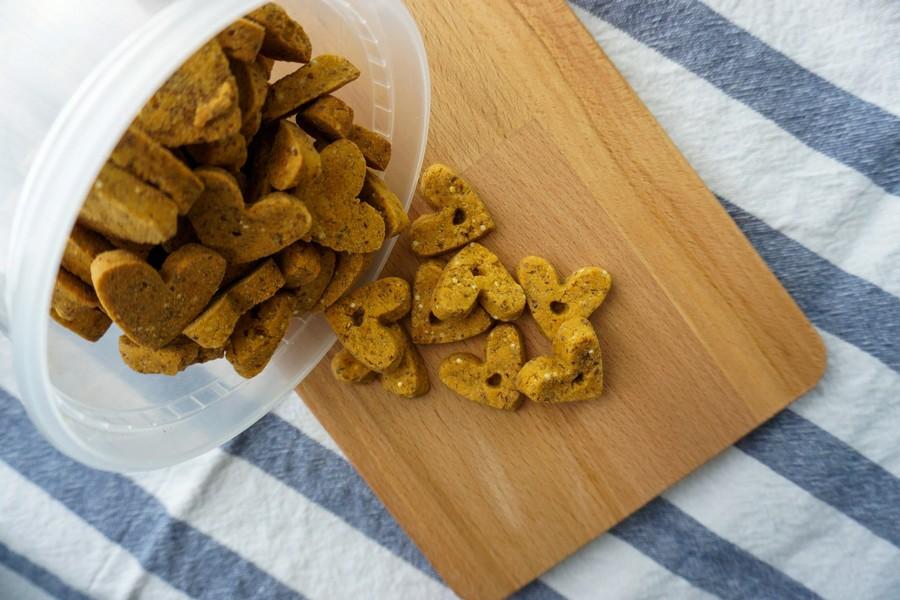 Dogs
Dogs
4+ MIN
08/11/2022
How to Choose the Right Treats for Your Dog
However, it's easy to be overwhelmed with all the packaged treats on the market -- cranberry apple muffins, tuna escapade, salmon delight...With so many options, how do you choose the right treats for your dog? After all, there are training treats, dental hygiene treats, long-lasting treats, and on and on.
It turns out, it DOES matter what types of treats you choose for your pet. You also should pay attention to how many treats you dole out in a day. After all, treats are meant to be 'extras,' not meals unto themselves.
Pet Treat Calorie Considerations
One of the biggest considerations when it comes to treats is caloric content. A very general veterinary recommendation is that treats should not be more than 10% of your dog's diet. This means, if you're feeding high-calorie treats, it may only take one or two before your pup has reached a healthy limit. Of course, that doesn't mean your dog will want you to stop giving him treats!
Treats for Dog Obedience Training
And sometimes, repeated treat-feeding is actually necessary. Take, for example, training treats. Whether you have a new puppy or a new-to-you dog that you're training, these small treats can be super helpful for your dog's cooperation. They're small because they're meant to be fed rapid-fire so you maintain your dog's attention. They're usually soft, which makes them easier to gobble down, and this can also make them easier to break into smaller pieces. Even training treats can still be too large - especially for small dogs.
It can also be useful to add in low-calorie treats, like baby carrots and frozen green beans, to help keep your pup's treat calories lower. Many trainers will tell you to use high-value treats during training sessions to get - and keep - your dog's attention. Bits of cheese and cooked chicken fall into the category of 'high-value.' Ideally, your dog will be receptive exclusively to low-calorie treats, but if this is not the case, you'll need to monitor treat intake very closely. No matter which types of treats you offer, for your pet's health, it's important not to go overboard.
Keep Track
If you're doing a lot of training with treats, then you'll likely want to cut back on your dog's dinner portion. After all, you don't want Max to put on too much weight, as that leads to health problems. How much to cut back will vary depending on your dog's age, size, activity level, and of course what type of treats you're giving.
Dental Treats
Of course, treats aren't just for training. There are lots of other types of treats meant to reward your pet, too. This includes dental treats. There are a variety of dental chews you'll find designed to clean tartar. Many veterinarians recommend them as a supplement to regular tooth-brushing to help clean your dog's teeth between dental cleanings. It turns out that dogs who are active chewers often have cleaner teeth, and since dental chews are designed for, well, chewing, these treats can help.
What About Antlers or Hooves?
Dogs might love antlers or hooves, but they get mixed reviews from veterinarians, with many doctors saying they're downright dangerous for dogs. It turns out the hardness of the material can lead to broken teeth, and sharp points can lead to mouth injuries. These issues can lead to expensive dental work or painful emergencies. We recommend that you discuss these types of treats, plus any alternatives, with your veterinarian.
Special Occasion Treats
Have you ever stood at the "barkery" counter mulling over the array of beautiful pupcakes? They do make gorgeous items. However, it's a good idea to limit these to very special occasions, like birthdays or other special holidays.
As you can see, there are lots of different types of treats for your dog. The best ones for your pet will be dependent on factors such as age, feeding frequency, and activity levels.
If it's just a tasty tidbit to show your love and affection, then most any of the treats on the market will probably be fine. Just don't load your dog up with them. Be open to low-calorie veggie treats, too, to help your dog maintain a healthy weight. Most importantly, be sure to talk with your dog's veterinary team for specific nutritional recommendations. We can help you make treat time less tricky for your dog's health!
by GeniusVets
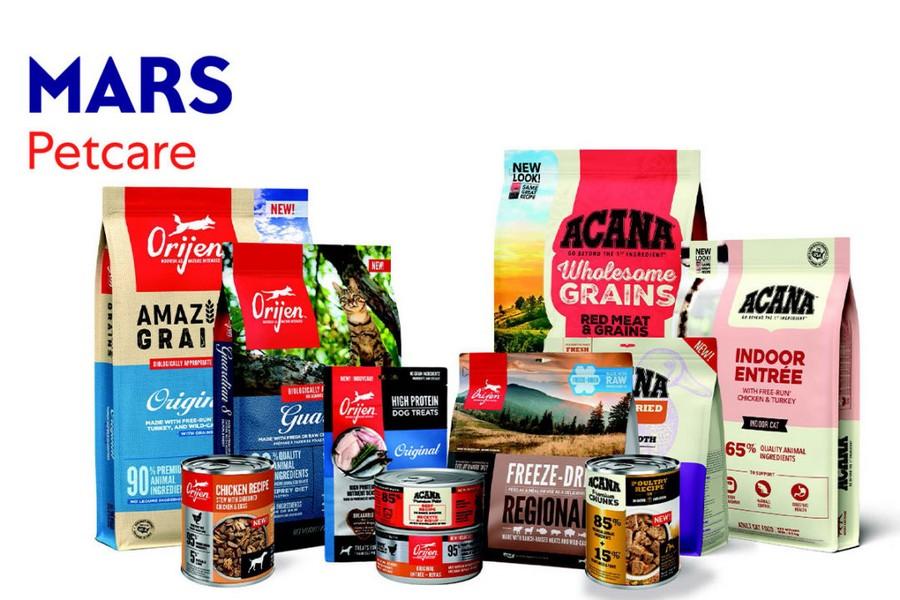 Market Information
Market Information
4+ MIN
03/11/2022
Mars Petcare to Acquire Champion Petfoods, Maker of ORIJEN and ACANA
BRUSSELS and EDMONTON, AB, Nov. 1, 2022 /PRNewswire/ -- Mars Petcare, part of Mars, Incorporated, today announced that it has signed a definitive agreement to acquire Champion Petfoods, a leading global pet food maker, from an investor group led by Bedford Capital and Healthcare of Ontario Pension Plan.
For more than 35 years, Champion Petfoods has been a pioneer in biologically appropriate pet foods, to nourish dogs and cats the way nature intended them to eat naturally in the wild. Champion Petfoods' two premier brands, ORIJEN and ACANA, have built a strong and trusted reputation in more than 90 countries, growing rapidly as pet owners increasingly seek out nutrient-rich pet food.
Ikdeep Singh, Global President, Mars Pet Nutrition, stated: "We are thrilled to welcome Champion Petfoods and its more than 800 talented people to the Mars Petcare family. The Champion Petfoods team has been a pioneer in developing high-quality and premium pet food in the natural category that pet lovers around the world trust. Together, we will be even better positioned to support pet lovers and fulfill our Purpose to create A BETTER WORLD FOR PETS™."
Mars Petcare is a Purpose-driven global business serving pets and pet owners through products and services within veterinary health, nutrition, innovation, and technology. Supported by the Waltham Petcare Science Institute, Mars Petcare has been advancing research into the health of pets for over 50 years, sharing breakthrough science in areas including preventive health.
Together, Champion Petfoods and Mars Petcare will provide a broader range of options for pet owners. Champion Petfoods' brands complement Mars Petcare's existing pet food portfolio by adding well-respected brands in the premium pet food category, broadening further its offering within pet specialty and independent retail, as well as digital commerce channels.
Champion Petfoods' dry food products are manufactured in company-owned, world-class kitchens in both Canada and the United States. Mars Petcare's significant capabilities and experienced Associates will support Champion Petfoods' talented team in driving further growth, innovation, and success. Combined with Mars Petcare, Champion Petfoods will also be able to fully capitalize on opportunities to expand its portfolio to meet evolving pet owner needs.
Blaine McPeak, Chief Executive Officer, Champion Petfoods, stated: "We are excited to join Mars Petcare and become part of a world leader in pet nutrition and services. This announcement is a wonderful way to recognize all the employees over our history who helped build Champion into a pre-eminent global pet food company with our incredible brands ORIJEN and ACANA. We look forward to working with Mars Petcare on taking Champion to an entirely new level."
The terms of the transaction were not disclosed. The transaction is subject to customary regulatory approvals and expected to close in the first half of 2023.
Advisors
J.P. Morgan Securities LLC served as Mars' financial advisor, and Skadden, Arps, Slate, Meagher & Flom LLP acted as Mars' legal advisor.
Morgan Stanley & Co. LLC served as Champion Petfoods' financial advisor, and Torys LLP and Bennett Jones LLP acted as Champion Petfoods' legal advisors.
About Mars, Incorporated
For more than a century, Mars, Incorporated has been driven by the belief that the world we want tomorrow starts with how we do business today. This common purpose unites our 140,000+ Associates. It is at the center of who we are as a global, family-owned business, and it fuels how we are transforming, innovating, and evolving to make a positive impact on the world.
Every year, our diverse and expanding portfolio of quality confectionery, food, and pet care products and services delight millions of people and supports millions of pets. With almost $45 billion in annual sales, we produce some of the world's best-loved brands including Ben's Original™, CESAR®, Cocoavia®, DOVE®, EXTRA®, KIND®, M&M's®, SNICKERS®, PEDIGREE®, ROYAL CANIN®, and WHISKAS®. We are creating a better world for pets through nutrition, breakthrough programs in diagnostics, wearable health monitoring, DNA testing, pet welfare and comprehensive veterinary care with AniCura, BANFIELD™, BLUEPEARL™, Linnaeus and VCA™.
We know we can only be truly successful if our partners and the communities in which we operate prosper. The Mars Five Principles – Quality, Responsibility, Mutuality, Efficiency and Freedom – inspire our Associates to act every day to help create a better world tomorrow in which the planet, its people and pets can thrive.
For more information about Mars, please visit www.mars.com. Join us on Facebook, Twitter, Instagram, LinkedIn and YouTube.
About Champion Petfoods
Champion Petfoods, led by its trusted brands ORIJEN and ACANA, was founded in Alberta, Canada. The company has grown to be a key player in the global pet food industry across 90 countries with strong development in Canada, the U.S., Asia Pacific, and Europe. Its purpose, To Earn Pet Lover Trust Every Day so Pets Thrive for a Lifetime, provides the foundation for its highest aspirations as a company. And its Food Philosophy drives the company to provide the highest quality in every product it makes. To learn more visit championpetfoods.com
About Healthcare of Ontario Pension Plan
HOOPP is a multi-employer, defined benefit plan serving Ontario's hospital and community-based healthcare sector, with more than 620 participating employers and 420,000 active, deferred and retired members. It operates as a private independent trust with a driving purpose to deliver the pension promise of retirement security for our members.
HOOPP is fully funded and its in-house team of investment professionals manages a highly diversified portfolio of more than C$114 billion in assets (as at Dec. 31, 2021). HOOPP Capital Partners is the private capital arm of HOOPP and has a portfolio of more than C$16 billion, including several investments in leading global consumer brands.
Media contact: Anthony Guerrieri
Mars Pet Nutrition
Phone: +1 908 798 1504
Email: [email protected]
SOURCE Mars, Incorporated
 Market Information
Market Information
3+ MIN
02/11/2022
How Economic Factors from Inflation to Supply Chain Disruptions Affect Pet Food Sales
These unusually high growth rates are both a function of the pandemic shot in the arm and of longstanding trends including the front-line role of pet food in pet health and wellness, product premiumization and pet population growth, especially among higher-income households. But with the pandemic at present seemingly manageable, inflation at record levels, and supply bottlenecks continuing to result in product shortages and higher prices, the first three quarters of 2022 have been challenging. What does the future hold? At the beginning of the year, pet owners were beginning to feel the pressure of rising prices as supply issues resulting in higher materials expenses drove up production costs. In Packaged Facts' January 2022 Survey of Pet Owners, 29 percent of pet owners said they were facing 'significant challenges' with price inflation in pet food, with the same percentage reporting a significant challenge with the excessive cost of pet food. Considering all pet products (food and non-food), nearly half of pet owners (45 percent) agreed that they were spending more on pet products 'due to this COVID-19 period,' with nearly one-fifth (18 percent), in strong agreement. Confirming the sparsely stocked pet food shelves in many stores, over one-fifth of pet owners (21 percent) said they were not always able to get their preferred pet foods/treats due to product shortages. The situation was even worse as of the third quarter of 2022, with a range of factors combining into the perfect storm of economic pressures. Across most consumer markets, prices have skyrocketed for three reasons. First is strong demand, with consumers who amassed savings during the pandemic while stuck at home and receiving stimulus money now spending. Second is scarcity of goods, with factory shutdowns, reduced production due to labor shortages and shipping backlogs snowballing into shortages along the supply chain. Higher costs for labor, services and housing is third, with rising rents and other expenses driving employees to demand higher wages and employers passing along these costs to consumers. Exacerbating the situation is the war in Ukraine, which has gummed up global supply chains even further and is partially responsible for the high cost of fuel. This toxic combination caused consumer sentiment to fall to its lowest point ever in June, based on the University of Michigan Index of Consumer Sentiment. In an effort to beat back inflation and stave off recession, the Federal Reserve raised interest rates by 0.75 percentage points in June (the largest increase in nearly 30 years) and another 0.75 percentage points in July. Specific to the pet food market, prices in the global grain market have been elevated due to competition from biofuels, putting pressure on human and pet food manufacturers alike. A stark indication of the massive economic pressures being brought to bear, the Consumer Price Index (CPI) climbed 7 percent in 2021, the largest 12-month gain since 1982, according to the Bureau of Labor Statistics. The pet market initially avoided some of these price increases, but Bureau of Labor Statistics data show a 9.1 percent inflation increase from June 2021 to June 2022, and in May, Adobe reported that online prices for pet products were 9.1 percent higher than a year ago. Pet owners are famous for being willing to spend even during a true recession, as seen during 2007-2008. And as of fall 2022, pet food sales have remained strong even as growth in many non-food pet categories has slowed. The factors most likely to dampen pet food sales in the short term are continued supply chain issues depriving pet owners of their preferred brands, and sticky inflation, which could result in even more well-off pet owners trading down to lower-cost private label and value brands. For the time being, though, pet shoppers continue to spend more on the premium and superpremium fare that primarily drives dollar sales, such as fresh pet food and 'kibble plus' (kibble with freeze-dried or other inclusions). And in August, the University of Michigan reported an unexpected improvement in consumer sentiment (to 55.1, from 50.2 in June and 51.5 in July), reflecting an unexpected decline in inflation (to 8.5 percent, from 9.1 percent in July). Plenty of uncertainty remains, but so far, 2022 is shaping up to be another double-digit-percentage growth year, with pet food on track to top $45 billion in 2022 and $60 billion in 2026. by David Lummis
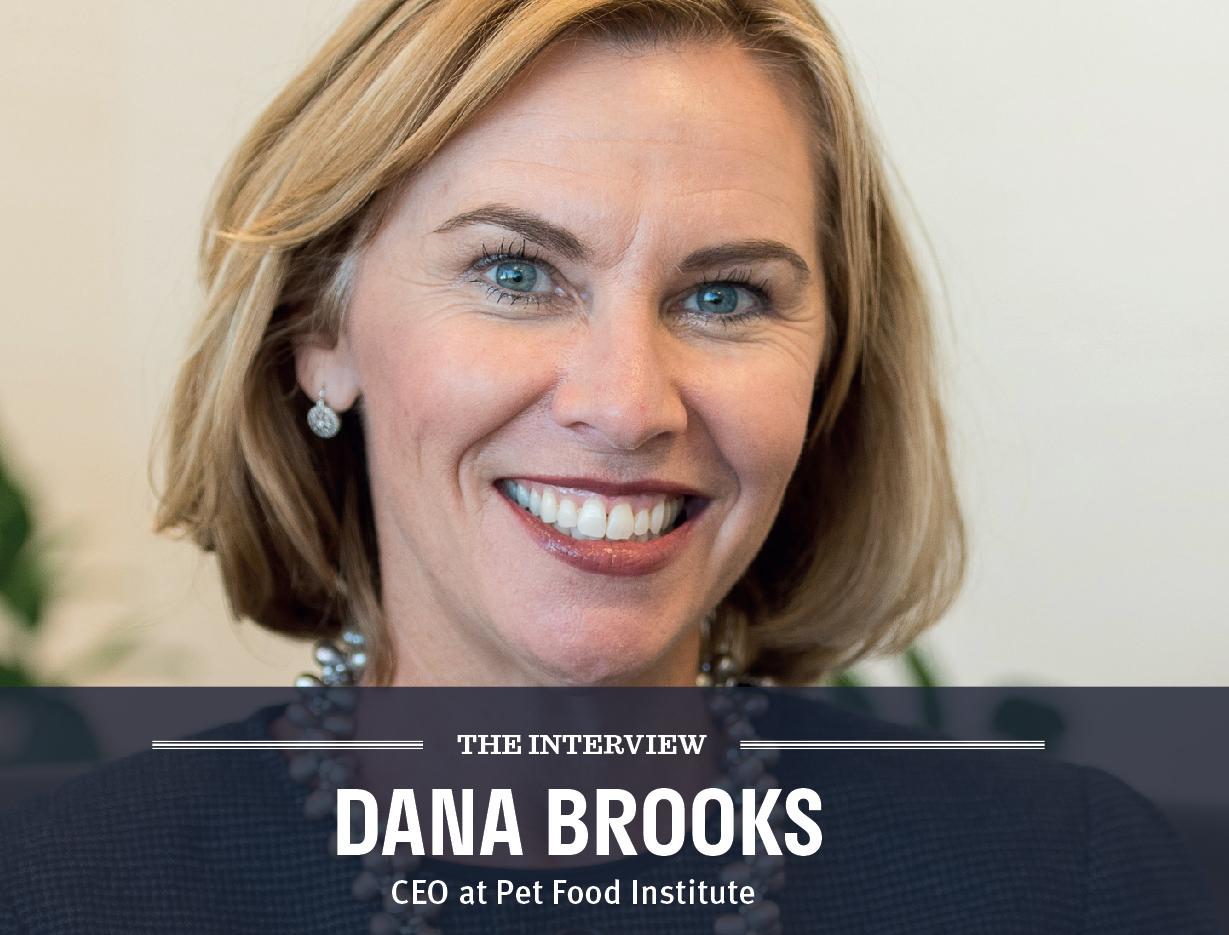 Interviews
Interviews
4+ MIN
01/11/2022
The Interview - Dana Brooks - CEO at Pet Food Institue
Good science is needed - not disruptors What does the Pet Food Institute do in the industry? What could you say about its mission? The Pet Food Institute's goal is to support the industry as the voice of U.S. pet food and treat makers. PFI is the industry's representative before Congress and state legislatures, as well as state and federal agencies; a public education and media relations resource; an organizer of seminars and educational programs; and a liaison to other organizations. Is there any current research in the industry that you consider a disruptive factor in its growth? I don't think there's research that is a disruption. Good science is needed - not disruptors. PFI's research group focuses mostly on food safety. How do you think the post pandemic pet food industry will keep on developing? Our members' goal is always to provide safe products that provide complete and balanced nutrition to dogs and cats. That goal will not change. One thing that we have seen is that post-pandemic, more American households than ever have a pet – about 70% now. This rapid growth, in addition to the sourcing issues due to renewable diesel mandates and trucking issues, will continue to create supply chain issues moving forward. PFI continues to advocate for solutions to improve supply chain issues and support the needs of pet lovers and their pets. How do you think that people's trends and habits impact their pet ownership? One big area we see this in is the increasing concern over pet obesity. Over 50% of American pets are currently overweight or obese. This, unfortunately, leads to a host of health issues for the animal including diabetes, joint, and heart issues. Studies show that a dog at a healthy weight can live up to 2.5 years longer than one that is overweight. During the pandemic, more Americans were home with their pets, and pets were being fed more treats and toys filled with peanut butter to keep the pets calm while people worked. Since less than 10% of a pet's daily caloric intake should come from treats, this created an unhealthy situation. That's why Pet Food Institute launched the Your Pet's Healthy Weight campaign to educate consumers on the dangers of pet obesity and encourage them to work with their vets to attain a healthy weight. Sustainability is one of the most important initiative nowadays. What do you think of it? How is the company embracing it? The pet food industry is embracing ideas that will make its operations more sustainable. Some of those efforts are hindered by regulatory challenges like the length of time it takes to get approval on new ingredients. PFI members take several different steps to support continued sustainability in the manufacturing of pet food. This can include steps such as investing in packaging advancements to minimize waste and maximize recycling to reducing water and energy use at manufacturing sites and avoiding competing with the human food supply. From responsible ingredient sourcing to on-site manufacturing and packaging, PFI members are finding multiple ways to advance the sustainable production of pet food. That's why the Pet Food Institute is working with the Pet Sustainability Coalition and we have created a Sustainability Working Group – to proactively search for ways to become more sustainable. The Pet Sustainability Coalition's Earth Day campaign is one example of how the industry is coming together to be more sustainable. During Earth Day 2022, pet industry professionals came together to complete over 10,000 earth-friendly actions. What challenges could you say are the most difficult to overcome for the industry nowadays? One of the biggest challenges are supply chain issues partially caused by mandates and incentives for renewable diesel use. In an effort to address climate change, the government is providing incentives to farmers to use animal and plant oils traditionally used in pet food and for human consumption to be used in the creation of renewable diesel. This is causing unintended consequences in the supply chain in the form of ingredient shortages and drastically increased ingredient costs for pet food makers. The lengthy, time consuming and expensive process of getting new and innovative ingredients approved for use in pet food. This process can take upwards of 5 years making it difficult for pet food makers to implement new research and sustainable practices to provide the best nutrition possible for pets. A key example of this is the use of insect proteins. Currently, there is tentative approval to use only one ingredient – black soldier fly larvae - in dog food. However, there are other high-quality insect proteins that could be used in pet foods if the approval process were more efficient and harmonized. This delays bringing highly sustainable ingredients to market at a time when the government is seeking to reduce carbon emissions. Source: Pet Food Institute
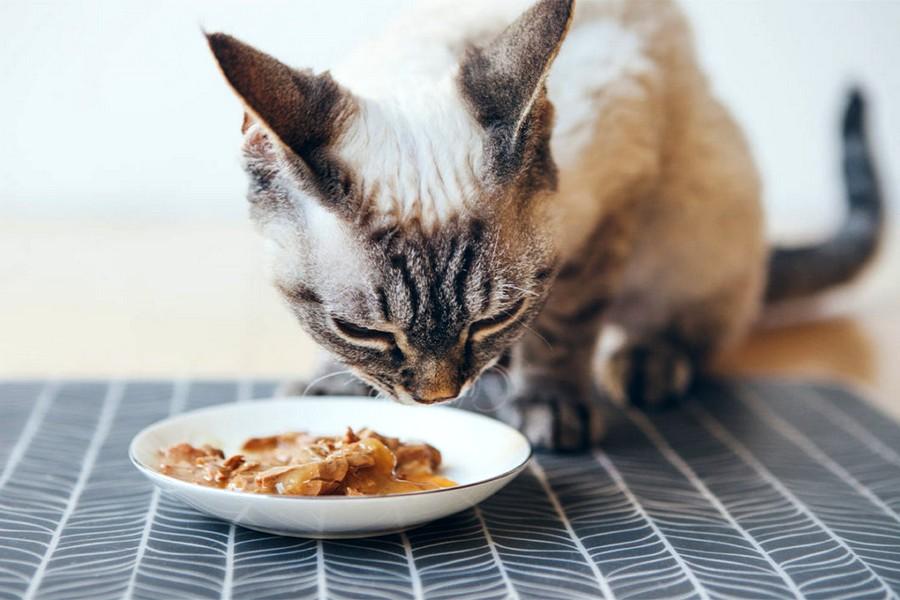 Palatants
Palatants
1+ MIN
31/10/2022
Kemin introduces new palatant line for wet cat food formulas
DES MOINES, IOWA — Kemin Nutrisurance, the pet food and rendering segment of Kemin Industries, recently announced a new line of palatants for use in wet cat food: PALIVATE™. With increased consumer awareness of pet health, many have switched their pets to more appetizing meals, like wet formats, which are often considered to be highly palatable. According to data shared by Kemin and reported by Euromonitor, cat owners choose wet formulas almost as often as dry ones, with wet cat food comprising 44% of the global volume of cat food. Although wet cat food is believed to be highly palatable, many consumers and pet food processors have struggled to get a cat to consume wet food, according to Kemin. Kemin's new PALIVATE palatants are designed to increase palatability of wet formulas while minimizing negative effects to a formula's overall integrity. The PALIVATE line can withstand retort processing and can be used for formats with low inclusions, including loaves and chunks in gravy. According to testing conducted by Kemin, the addition of PALIVATE in chunks in gravy formats increased a cat's overall intake of the food. The dry palatants also significantly outperformed a competitive palatant when used in chicken- and salmon-based loaf formulas, according to the company. By Nicole Kerwin - Pet Food Processing
 Laboratory
Laboratory
10+ MIN
27/10/2022
Controlling Mycotoxin Contamination in Pet Food
The prevention of mycotoxin contamination in the grain components of animal diets is not only an essential goal, but also an immense challenge that requires the combined efforts of pet food manufacturers, their supply chain partners, and the laboratories that test their products. Both the urgency and the difficulty of this shared task lie in the chemical properties, physical characteristics, and complex interactions with environmental factors that define mycotoxins as a persistent and notoriously elusive threat to the wholesomeness of grain-based pet food ingredients.
HOW MYCOTOXINS OCCUR IN THE SUPPLY CHAIN AND WHY IT'S SO HARD TO KEEP THEM OUT
Mycotoxins are poisonous chemical compounds produced by molds. Their occurrence spans every growing region in the world, every phase of the pet food production chain, and the entire gamut of whole grains and grain byproducts from corn, barley, and soybeans to corn gluten meal, wheat middlings, and distillers' dried grains with solubles (DDGS).
A global survey conducted between 2004 and 2013 uncovered mycotoxin contamination in over 76 percent of 25,900 samples of grains and grain byproducts destined for animal diets.¹ These statistics reflect the omnipresence of the soil-and airborne molds that generate mycotoxins as well as the difficulty of controlling all of the factors that favor mold growth. Toxigenic molds are most likely to proliferate in grains that are damaged by insects, hailstorms, or drought stress or exposed to high temperatures and moisture levels. Infections can occur both before and after harvest. Grain stored in damp, dirty, or poorly ventilated areas in silos, mills, or transport vehicles is at particularly high risk for mold infection.
Once these fast-growing molds gain a foothold in a storage or production facility, there are few good alternatives to removing the materials that harbor their toxic metabolites. If mycotoxin concentrations exceed FDA guidelines, entire lots may need to be discarded. FDA rules generally prohibit grain dealers and pet food manufacturers from blending highly contaminated ingredients with clean grain to reduce mycotoxin content to acceptable levels. While mold reduction strategies such as drying and irradiation can help limit the spread of contamination, they're much less effective at destroying the mycotoxins that have already formed.
As a result, significant levels of mycotoxins can lurk unseen in lots with no visible mold growth. Heat processing is also likely to leave a substantial proportion of these highly stable chemical compounds intact. Some types of processing actually increase mycotoxin content. For example, the processes that create DDGS and many other grain byproducts tend to concentrate mycotoxins in those ingredients.² Detoxification methods such as ozone and organic acid treatments as well as feed additives that bind to or degrade mycotoxins in an animal's gut also come with limitations. All of these methods are relatively costly. Some may also reduce nutrient content or form toxic residues.
RAISING THE BAR IN HAZARD CONTROL
The mycotoxins that most commonly occur in grains are aflatoxins, deoxynivalenol (DON), fumonisins, ochratoxin A (OTA), the T-2 toxin and zearalenone (ZEA). The most toxic mycotoxin, aflatoxin B1, is the most carcinogenic naturally occurring substance known. Even in doses low enough to be measured in parts per million (ppm) or, in some cases, parts per billion (ppb), these toxins are potent enough to cause acute illness in susceptible animal species. When consumed in very low doses over the long term, they can result in chronic health problems, including cancer, food refusal and weight loss, organ damage, neurological disorders, and decreased resistance to disease. In the European Union, all six of these mycotoxins as well as the HT-2 toxin are subject to maximum or recommended limits. At present, FDA mycotoxin guidelines are confined to aflatoxins, DON, and fumonisins. (See Table 1.)
As a growing number of pet food companies have already realized, compliance with current guidelines may fall short of full coverage of the risks surrounding mycotoxin- contaminated pet food. Mycotoxin sensitivity can vary significantly across age, species, breed, and general health status. Yet with the exception of rabbits and horses, the FDA guidelines that apply to pets don't account for these differences. The guidelines also fail to address another important consideration. Grain ingredients typically contain a mixture of mycotoxins. Mycotoxins that commonly occur together often interact with each other in ways that can dramatically increase their toxicity. Consequently, the negative effects of ingesting a mixture of two or more mycotoxins can be significantly greater than those of consuming each component of that mixture separately.
Examples of highly toxic combinations include pairs of chemically similar mycotoxins such as DON and nivalenol and the T-2 and HT-2 toxins. For customers whose pets may have a heightened sensitivity to mycotoxins as a result of advanced age, frail health, or the genetics of their breed, even trace levels of these mixtures are a cause for concern.
In response to these risk factors, many companies not only test ingredients for a full range of mycotoxins but also maintain tighter restrictions of their levels than those proposed by current regulatory guidelines. To confirm raw materials meet their quality and safety specifications, these companies often require supply chain partners to provide a certificate of analysis (CoA) that includes a detailed mycotoxin profile, which will then be checked against test results from their internal or contract laboratory. With the passage of the Food Safety Modernization Act, comprehensive laboratory data are playing an increasingly vital role in documenting the geographical source of pet food ingredients and verifying the observance of industry-standard safety practices across the supply chain. In addition to helping ensure regulatory compliance, this information serves as reassuring evidence of product safety for pet owners.
Frequent monitoring of raw materials benefits every member of the supply chain by not only minimizing the economic and legal risks of contamination, but also demonstrating a proactive approach to hazard control. Routine checks of mycotoxins levels can lead to significant process improvements in storage, milling, and manufacturing facilities. Timely discovery of an uptick in contaminant levels may point to problems such as a leaky water pipe, dirty storage bins, or inadequate attention to rotating stock that indicate the need for internal practices that will help prevent future outbreaks.
THE CHALLENGES OF OBTAINING ACCURATE TEST DATA
The success of these stricter safety measures hinges on the quality of the mycotoxin data generated by a company's monitoring program. Without a strategy based on a clear understanding of the complexities involved, the goal of accurately estimating mycotoxin concentrations in large grain loads can prove difficult to reach.
One of the most important factors a testing strategy must account for is the uneven distribution of mycotoxins in grain lots. Mycotoxins tend to occur in tiny, widely scattered pockets of damp or damaged grains. A sample collector who takes a single scoop of grain from the top or side of a load runs the risk of either missing the contaminated kernels completely or gathering materials that contain concentrations of mycotoxins that far exceed the average values for the whole lot. GIPSA-recommended sampling procedures compensate for these risks by calling for a representative sample that consists of incremental subsamples from multiple locations in the lot. GIPSA also advises collecting a minimum of 2 to 10 pounds of grain, depending on the size of the load, and using proper sampling equipment, such as a hand or mechanical probe for stationery grain or a pelican or diverter-type sampler for a moving stream.³ To minimize the chance of variable test results, the entire process should be carefully documented and followed to the letter by all employees.
The reliability of the test results also depends of the robustness of the test method. One of the major obstacles to accuracy is the difficulty of detecting and measuring ppb levels of mycotoxins in a complex organic matrix. Grains and grain byproducts contain a diverse array of nutrients and plant chemicals that may interact with the sensitive antibodies that immunoassays use to detect mycotoxins, producing false-positive or false-negative results. Methods that call for purifying the sample before measuring the mycotoxin levels can help minimize these matrix effects. However, methods that require a lengthy, intricate sample preparation process can increase the chances of procedural errors.
Whatever their cause, the repercussions of false negatives and false positives are extremely costly. Accurate mycotoxin data are critical to a company's ability to identify which shipments of grain should be rejected and which batches of raw materials need to be treated or discarded to prevent the spread of contamination. The wrong call could lead to losses of valuable resources, time, and raw materials or, in a worst- case scenario, a finished product that contains unsafe levels of mycotoxins.
THE VALUE OF A COMPREHENSIVE, TARGETED TESTING STRATEGY
Once a company has established consistent, correct, and repeatable sampling procedures, it should develop a testing system that not only satisfies the technical demands of quantifying mycotoxins, but also fits its business priorities. Whether the sample consists of whole wheat or corn screenings, the test method should be officially validated for that particular commodity. At the same time, the test must accommodate the company's budget and deliver accurate test data where and when they're needed.
Massachusetts-based test developer VICAM, A Waters Business, offers a range of GIPSA- and AOAC-approved test kits that are specifically designed to empower pet food companies and their supply chain partners to implement practical, cost-effective frequent monitoring programs. The core of its portfolio is a range of quantitative methods that can be used to determine the exact concentration of mycotoxins in raw materials at critical control points in the production chain. In addition to providing manufacturers and grain dealers with convenient and reliable onsite testing options, VICAM equips analytic laboratories with advanced instrumental methods that afford their pet food industry clients with the highest level of confidence in their mycotoxin data.
IMMUNOAFFINITY COLUMNS
The most powerful, versatile, and comprehensive solution set in VICAM's portfolio is its line of immunoaffinity (IA) columns. The company offers a variety of columns that are officially approved for determining mycotoxins in a wide range of feed ingredients, including corn, barley, corn bran, condensed distillers solubles, corn flour, corn gluten feed, corn gluten meal, corn meal, corn screenings, corn/soy blend, distillers' dried grains, DDGS, sorghum, soybeans, and wheat. Used to purify and concentrate samples for analysis by fluorometry or laboratory instruments, IA columns optimize the value of representative sampling by maximizing the recovery of mycotoxins while removing matrix interferences. This method further reduces the chances of false negatives and false positives by eliminating complex, error-prone procedures.
Coupled with a portable fluorometer, VICAM's IA columns can be used to check mycotoxin levels in incoming shipments, to efficiently prescreen samples for instrumental analysis, and to monitor raw materials in storage and grain processing facilities and pet food manufacturing plants. This cost- effective rapid method requires no special training and provides accurate ppb measurements in less than 15 minutes.
To confirm raw materials meet the most exacting product specifications, VICAM recommends combining IA column cleanup with liquid chromatography (LC). The exceptional sensitivity of sophisticated instrumental techniques such as high performance and ultra performance liquid chromatography (HPLC and UPLC) with optical detection and LC with mass spectrometry (MS) detection enable highly reliable and precise measurements of very low levels of mycotoxins in complex grain matrices.
There's an IA solution for every major mycotoxin of concern:
AflaTest®
DONtest™ HPLC
FumoniTest™
OchraTest™
T-2test™ HPLC
ZearalaTest™
IA columns are also available in fast-flow wide-bore versions to accelerate sample throughput. To help laboratories further boost their efficiency while responding to their clients' concerns about highly potent mycotoxin mixtures, VICAM offers several kits that simultaneously determine ppb levels of two or more mycotoxins in a single test run.
AflaOchra™ HPLC (aflatoxin/OTA)
AOZ® HPLC (aflatoxin/OTA/ZEA)
DON-NIV ™ WB (DON/nivalenol)
T-2/HT-2™ HPLC (T-2/HT-2)
Myco6in1+® for LC/MS/MS (six major classes of mycotoxins)
These multi-analyte kits offer multiple advantages:
Faster time-to-results
Higher throughput
Reduced spending on lab consumables and hazardous waste disposal
Decreased hands-on time
Smaller environmental footprint
The multi-analyte method that delivers the greatest efficiency gains and the most detailed and authoritative mycotoxin data is Myco6in1+ for LC-MS/MS. Validated by the European Committee for Standardization (CEN), this high-powered instrumental method accurately detects and quantifies 12 different mycotoxins, including aflatoxins, ochratoxin A, fumonisins, deoxynivalenol, zearalenone, the T-2 and HT-2 toxins, and nivalenol at or below the strict guidance levels set by EU regulators.
QUANTITATIVE STRIP TESTS
VICAM's quantitative strip tests combine the speed, affordability, and ease of use with the assurance of accurate numerical measurements. While less precise than instrumental methods, this rapid test is a solid alternative when economical access to real-time data is the most critical factor. No special skills are required for sample preparation or interpreting the test. The test solution develops in as little time as 5 minutes, and results are clearly displayed on the digital screen of a portable optical reader.
Strip tests are an appropriate choice for laboratory and onsite applications that require rapid, informed decision making, including:
Determining the acceptability of shipments at buying points;
High-throughput laboratory screening; and
Routine monitoring and quality control checks in storage facilities, mills, and manufacturing plants
The line enables untrained users to detect and measure five highly significant mycotoxins at levels that meet rigorous safety standards.
Aflatoxins: Afla-V® (ppb levels)
DON: DON-V® (ppm levels)
Fumonisins: Fumo-V® (ppm levels)
Ochratoxin A: Ochra-V ™ (ppb levels)
Table 1. FDA action and guidance levels for mycotoxins in pet food
MANAGING THE COMPLEXITIES OF MYCOTOXIN CONTROL
Pet food industry stakeholders are well aware of the risks that mycotoxins pose to their financial performance and brand reputation. While many companies are stepping up their investment in the critical task of mycotoxin management, the very nature of these contaminants can complicate their efforts to balance the benefits against the costs. Nevertheless, mycotoxins can be cost-effectively quantified and controlled. As a first step toward accomplishing that goal, companies should develop a knowledge-based strategy that integrates consistent attention to mycotoxin levels with scientifically sound, industry-proven sampling and test methods.
References
1. 1G. R. Murugesan, et al., 'Prevalence and Effects of Mycotoxins on Poultry Health and Performance, and Recent Development in Mycotoxin Counteracting Strategies,' Poultry Science, 2015. doi: 10.3382/ps/pev075.
2. Luciano Pinotti, et al, 'Mycotoxin Contamination in the EU Feed Supply Chain: A Focus on Cereal Byproducts,' Toxins, February 15, 2016.
3. USDA Grain Inspection Handbook — Book I Grain Sampling, https://www.gipsa.usda.gov/fgis/handbook/gihbk1_inspec.aspx (accessed
By Vicam
 Palatants
Palatants
2+ MIN
25/10/2022
Kimberly Nelson named president of Kemin Nutrisurance
Kemin Industries has named Kimberly Nelson, a third-generation member of Kemin's founding family, as president of Kemin Nutrisurance, the company's pet food and rendering technologies business unit. Kemin, a family-owned-and-operated company, was founded by Nelson's grandparents, R.W. and Mary Nelson, 61 years ago. Nelson has been with Kemin for seven years, most recently serving as General Manager – North America for Kemin Nutrisurance. During her tenure, the global business unit saw double-digit sales growth despite the challenges of the COVID-19 pandemic and its stress on the supply chain. 'I'm thrilled to lead Kemin Nutrisurance and immensely proud to continue the important work my family has built over the last six decades,' said Nelson. 'As a pet owner myself, I'm especially excited to be part of this business unit, and I am eager to continue our success and expand upon it to further cement our position as an industry leader.' Prior to joining Kemin Nutrisurance, Nelson served as President of Kemin Textile Auxiliaries, operating under the brand Garmon Chemicals, which provides total chemical solutions for the denim and apparel industry. Nelson helped lead the acquisition of Garmon Chemicals in early 2018 and served as Business Development Manager, then General Manager – India, for Kemin Textile Auxiliaries. 'I am very pleased to promote Kimberly Nelson to President of Kemin Nutrisurance, as she has demonstrated the people-focused leadership and business savvy needed to guide our pet food and rendering business,' said David Raveyre, Worldwide Group President, Kemin Industries. 'Kimberly has an excellent track record of driving innovation and has demonstrated her ability to effectively direct a global business unit. With the results she's already delivered, I'm confident she will continue the impressive legacy of the Nelson family and Kemin.' Nelson spent five years in marketing in Hong Kong before joining Kemin in 2017. She received her bachelor's degree from Northwestern University and her master's degree from Savannah College of Art and Design. Nelson will begin her new role in October 2022, and Alberto Muñoz, currently Marketing Director for Kemin Nutrisurance, will fill her previous position as General Manager – North America for the business unit. By Kemin Industries All Pet Food
 Palatants
Palatants
3+ MIN
24/10/2022
Marcelo Beraldo Costa – Appointed as LATAM Director
When I started 17 years ago, I never would have imagined the growth of AFB in Latin America, let alone the pet food market growth this region has experienced. My journey with AFB has included the growth and expansion of facilities in Argentina, Brazil, and Mexico. So, in August of this year when I was approached to be the LATAM Director, it was with gratitude, joy, and reflection that I accepted this role. The political and economic issues of our region make the landscape even more challenging, but the access to raw materials helps balance things. At the end of the day, pet food is an exciting place to be right now. We continue to see changes in what pet parents want in their pets' food. Today, there is more focus on health and wellness, and it is our responsibility to ensure that pets enjoy the taste of their meals, but we also respect the trends our customers want to claim on their diets. Therefore, our innovation must focus on two things at the same time: meeting the palatability needs of our customers and honoring their brand philosophy. As the pet food market grows and changes, AFB must constantly innovate to meet the needs of pet food companies. For AFB, having centralized leadership for the Latin American region is of great importance. This is how the advances of this region will be enhanced, through coordinated actions. That means actions with the same direction and intensity. A global mindset helps us experience regional growth because we can adjust to changing industry and economic challenges. In a recent magazine interview, I talked about some of the latest pet food industry challenges around supply assurance. 'Between global supply chain problems and material shortages, pet food procurement and technical teams have been a very exciting experience. All these challenges make our industry stronger and improve our resilience, but we believe it's also caused a temporary dip in pet food innovation. Fortunately, our industry is coming out of it now, stronger than ever and excited to get back to the business of pet food innovation.' Speaking of local actions, I cannot forget to mention the successful return of in-person tradeshows in the region. In May, we had FENAGRA in Brazil, where we had the opportunity to present 'Palatability in Pet Food'. In June we exhibited at Foro de Mascotas in Mexico, where we met with many of our customers and industry professionals. Finally, in September, we exhibited at CIPAL in Argentina, where we also had a presentation on the topic of measuring food enjoyment in cats beyond consumption. All these events create great business opportunities, closer ties with our customers and an understanding of market challenges. It is with enthusiasm and optimism that I visualize our challenges to further expand AFB in Latin America and as a consequence, expand AFB globally. Feel free to reach out to discuss how AFB collaborates with our customers to develop tailored pet food palatants to meet specific needs. You can reach me at [email protected]. By: Marcelo Beraldo da Costa Source: All Pet Food
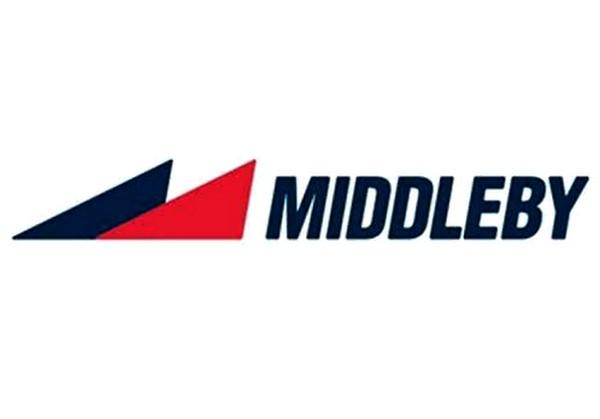 Packaging
Packaging
1+ MIN
21/10/2022
Middleby Acquires CP Packaging, Expands Offerings in Packaging Innovation
Based in Appleton, Wisconsin, CP Packaging has annual sales of approximately $15 million.'C tomers with industry leading sanitation, faster production throughput and reduced operating costs. This acquisition further expands upon our ability to provide customers with integrated full-line solutions, while significantly strengthening the packaging equipment offerings in our food processing portfolio,' said Tim FitzGerald, Middleby CEO. 'There are meaningful synergies amongst our packaging brands and our food processing platform, as we leverage our long-standing customer relationships, established global distribution and manufacturing capabilities.' The Middleby Corporation is a global leader in the foodservice industry. The company develops and manufactures a broad line of solutions used in commercial foodservice, food processing, and residential kitchens. Supporting the company's pursuit of the most sophisticated innovation, the state-of-the-art Middleby Innovation Kitchens showcases and demonstrates the most advanced Middleby solutions. In 2022 Middleby was named a World's Best Employer by Forbes and is a proud philanthropic partner to organizations addressing food insecurity. For more information on Middleby and the company's brands please visit www.middleby.com . For more information on CP Packaging and its advanced packaging technologies is available at cppac.com. Contact: Darcy Bretz, Director of Corporate Communications
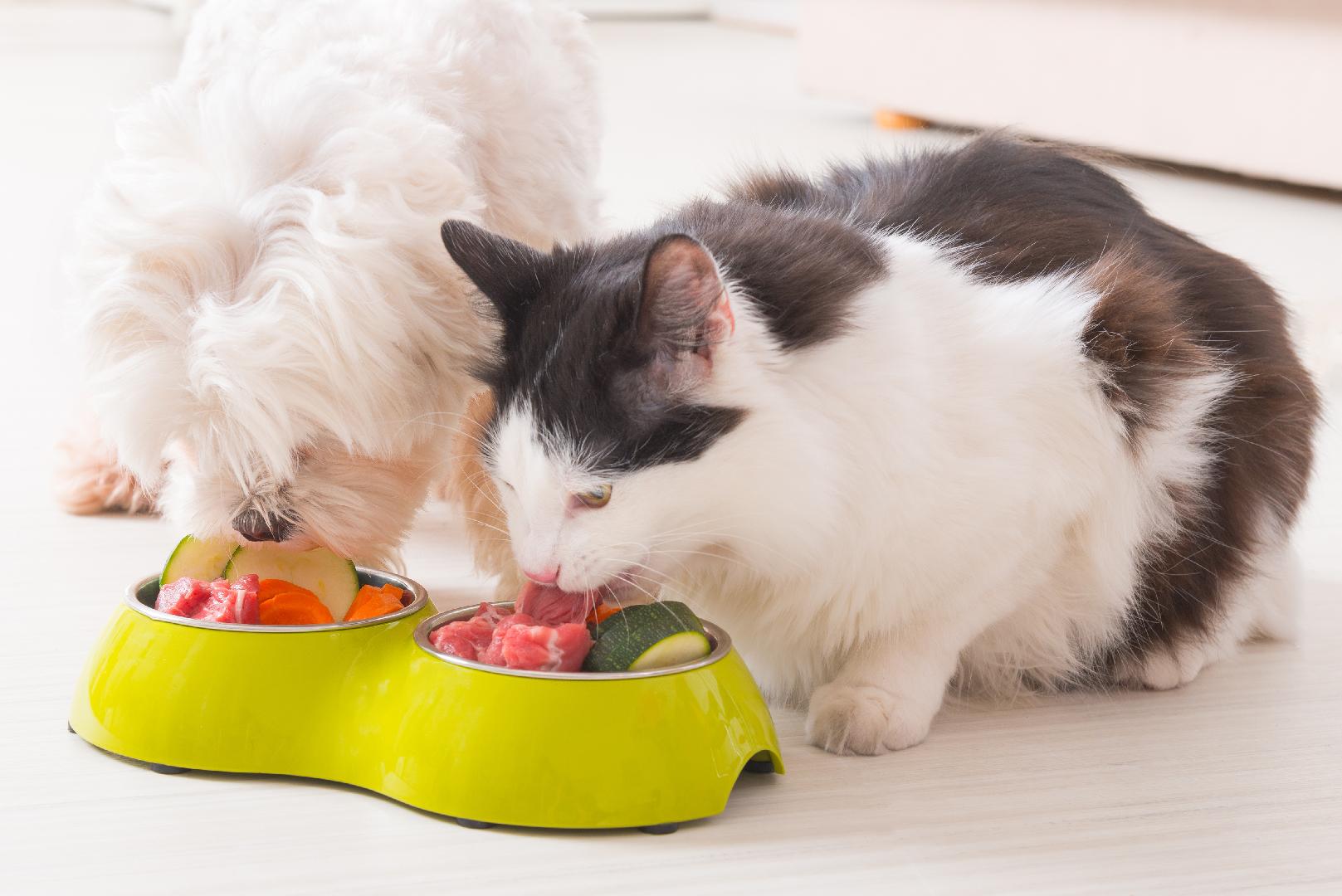 Micro Ingredients
Micro Ingredients
4+ MIN
20/10/2022
Por María Candelaria Carbajo
What are nutraceuticals, and what is their use in pet food?
What are nutraceuticals? The term emerged in the late 80s resulting from the contraction and union of "nutrition" and "pharmaceutical". Nutraceuticals are bioactive compounds that occur naturally or by chemical or biological synthesis. The objective of its use is to improve nutrition and, consequently, health. They can be used for both humans and animals. As we already know, the healthcare trend is booming, so it is not surprising the increase in the demand for this component. Thus, an important aspect of pet humanization is that people are paying greater attention to safety and nutritional needs; and as this comes at a higher cost, the rise in the global middle-class population (along with higher income available) helps the industry to develop along this path. Currently, the owners want to give their 4-legged children the most pleasant and long life possible. Apart from going to the veterinarians, when necessary, they look for other ways to prevent disease or nutritional problems. Thanks to advances in the pet food industry, there is scientific evidence for the beneficial effects of many nutraceutical compounds. Types of nutraceuticals Although there is no official regulation about the types of nutraceuticals, they are often classified as: • Dietary supplements: They contain nutrients derived from food and usually come in liquid, capsules, or powder form. They are regulated by the FDA, although differently from drugs. • Functional Foods: Fortified, enriched, or improved dietary components that may reduce the risk of chronic disease and provide an additional health benefit. • Medicinal foods: used to treat a specific disease or condition (diagnosed by a doctor and administered under his supervision). General benefits attributed to the use of nutraceuticals • Creation of specialized formulas • Improved palatability • Improved nutritional quality • Improved nutrient digestibility and bioavailability • Increased antioxidant defenses • Improves cell proliferation, gene expression, and protection of mitochondrial integrity • Prevention of chronic diseases • Delayed aging • Increased life expectancy • Reduction of probability of contracting diabetes and renal or gastrointestinal disorders Most popular nutraceuticals Eicosapentaenoic acid (EPA) and docosahexaenoic acid (DHA) Coming from fish oils such as salmon and anchovy, for example, they are the most used and on which the most studies have been carried out. They are used to enhance essential nutritional functions and for their beneficial effects on the immune system response. In addition, it is said that they slow down the aging process. Vitamin cocktails The dietary supplement with various antioxidant vitamins (C, E, L-carnitine, lipoic acid, glutathione, etc.) is considered beneficial in periods of stress for the animal such as pregnancy, lactation, exercise, aging, and obesity, among others. The problem of nutraceuticals? Their loophole It appears that nutraceuticals have more than one health benefit for animals; however, there is a universal problem: there is still no legal definition for them. This results in manufacturers not having specific legal indications on their use. Thus, they also do not have to prove their benefits or where they get them. The truth is that not enough information is yet known to confirm that these compounds provide the attributed benefits, so it is impossible to define doses and mechanisms to achieve a particular result. Nowadays, the dosage nutraceuticals usage is an uncertain and empirical process. In cases of plant extracts such as: Vaccinium Myrtillus (European blueberry), Curcuma longa (turmeric), Echinacea Angustifolia (echinacea), or Silybum marianum (milk thistle), the difficulty is twofold; they not only represent a challenge for the correct dosage but also for its standardization. The same goes for propolis: a resinous mixture that bees collect from various botanical sources. Its composition has more than 300 identified active components, and despite being a promising nutraceutical due to benefits associated with its components such as immunomodulators, antioxidants, and antimicrobials, more research is needed on its effect on dogs and cats. In conclusion We know that, in 2019, North America was the segment that presented the most participation in the use of nutraceuticals for their pets. The increasing number of one-person families, the rising cost of veterinary medicine, and the late aging of the pet population are some of the principal causes that push owners to seek natural and organic preventive alternatives. Consumers' preference for this type of product undoubtedly leads us to rethink the strategies and mechanisms we use in the pet food manufacturing process and what role nutraceuticals play in each of them. However, consumer pressure has meant that today (and we proudly say it!), the most important thing in the pet food industry is to improve formulas. Now, we offer diets based on conscientious, scientific nutrition. That is a battle that we have all won through hard work, research, and dedication. What do you think of these components? We invite you to share your opinion in the comments. By: All Pet Food
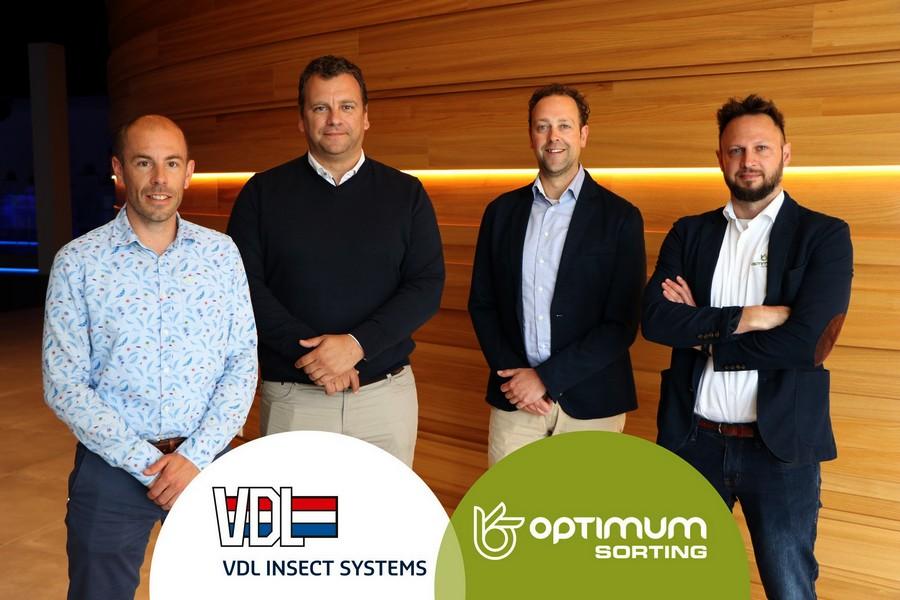 Market Information
Market Information
1+ MIN
19/10/2022
Strengh through Cooperation and Innovation
By combining VDL's strengths on agricultural technology, and more specifically feeding/dosing equipment, with Optimum Sorting's state of the art inspection technologies, this tandem brings forward a whole new level of automation to the Insect industry (feed/food) to support this fast growing business. Whether on dosing of neonates and small larvae, specific product selection, grading and sorting or as end-quality control, a complete tailored solution can now be provided. 'We are very delighted to cooperate with such a professional company and have access to the high class technology, this step will definitely contribute in accelerating the insect industry. It is a big step forward in terms of technology use and speed within the industry', says Geert Poels (VDL) Being a forerunner in terms of technology development for sorting challenges all around the globe and on a wide variety of products, from food to non-food, is part of Optimum's DNA. 'Having found a partner with the right business ethics, skills, experience and motivation to be at the cradle of growth together of such an interesting business, was part of the decision for us to team up with VDL Insect Systems' according to Lars Janssens (Optimum Sorting). by VDL Insect Systems
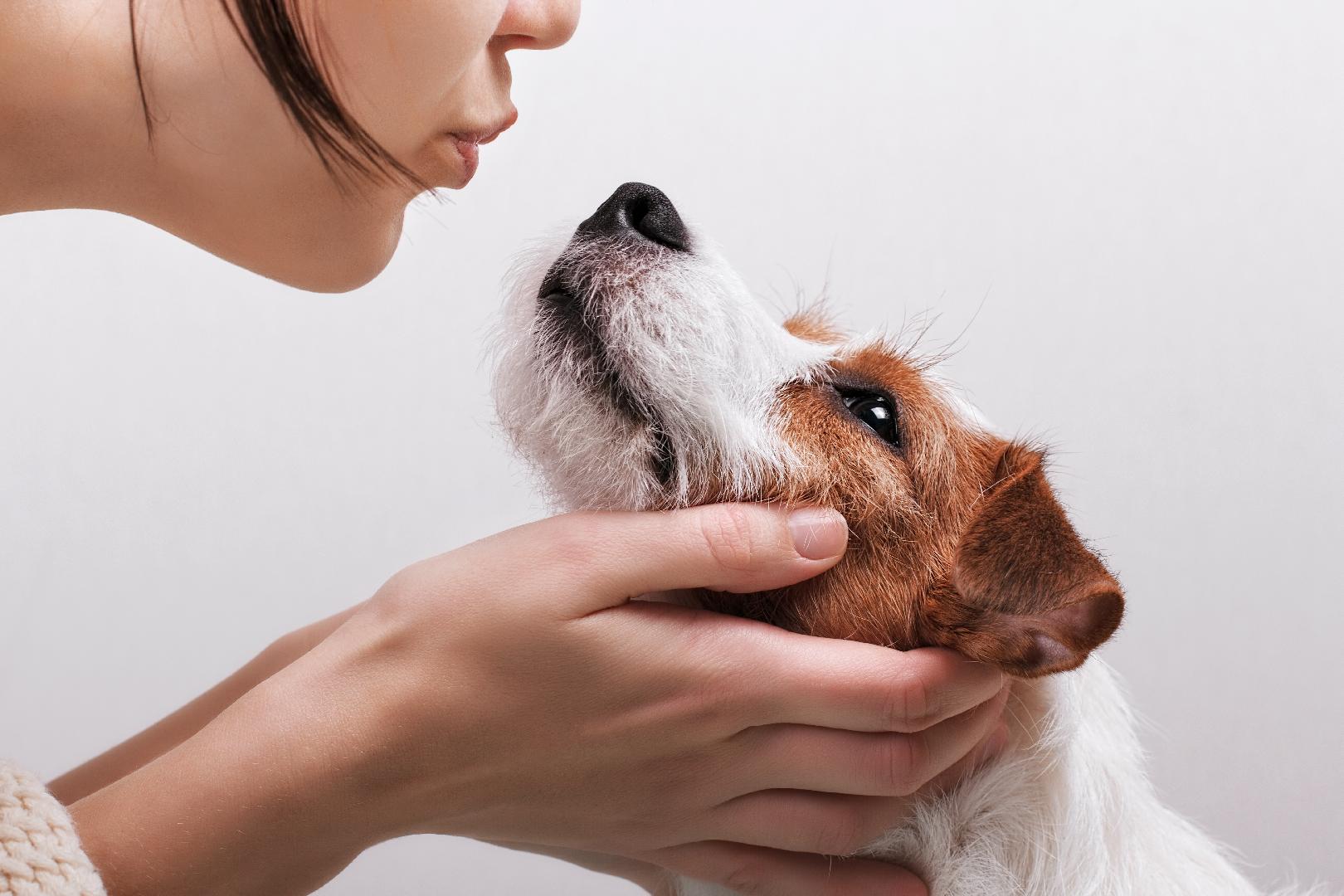 Dogs
Dogs
5+ MIN
18/10/2022
Por María Candelaria Carbajo
Salmonella in pet (& human) food
It is unnecessary to go very far back to understand that salmonella causes problems today. In the United States, for instance, in March 2021, the FDA confirmed that five of the major brands of dog and cat food companies had to withdraw more than 140 products from the market for possible salmonella contamination. In the field of human food, it is also unnecessary to go beyond 2022 to find similar news: the manufacturer of the Kinder brand had to withdraw, last March, hundreds of batches of the famous chocolate egg due to the notification of more and more cases associated with salmonella. In the US, the Centers for Disease Control and Prevention (CDC) estimates that there are about 1.35 million cases of salmonellosis each year, with 26,500 hospitalizations and 420 deaths. In this country, salmonellosis is the second leading cause of foodborne illness. But what exactly causes Salmonella bacteria? Salmonella bacteria cause salmonellosis, a foodborne illness. Salmonellosis in dogs and cats Salmonellosis is rare in dogs and cats; very often, they do not develop the disease but become its carriers. It means that, even if a pet does not show symptoms of illness, it can shed Salmonella bacteria in its feces and saliva and spread it throughout to people and other pets, such as cats with shared litter boxes or climbing on kitchen counters. In the case of dogs, the most common way of spread is through kissing and petting. The truth is that the most prone are puppies and adult pets with pre-existing diseases and their most common symptoms are vomiting, diarrhea (with or without blood), fever, loss of appetite, and decreased activity level. If we are saying then that those pets do not run a major risk of contracting salmonellosis throughout their lives, why is it so important to take care of the disease spread among their food? Ideally, every pet has an owner who cares for it, loves, feeds, and protects it. In the case where this happens, the connection is direct. How many of us caress and kiss our pets even knowing that they self-hygienize their entire body? The correlation is consistent: the pet eats food with the bacteria, the owner kisses the pet, and the owner gets salmonellosis. Thus, the bond between pets and humans is more than visible, not only in terms of affection but also in the importance of caring for the health of both individually and interdisciplinary collective health (family and social). In this sense, pet food is one of the ways in which people can get the bacteria (in addition to meat and poultry products, raw fruits, and vegetables). If, for example, contaminated pet food or utensil is handled and then the person touches their mouth, they may be accidentally ingesting the bacteria. What foods are most likely to contain the bacteria? While all pet foods can contain bacteria, some formats are more likely than others, such as raw ingredient foods. Freezing and drying, for example, are two processes that reduce the chances of bacteria growth; even so, they do not kill the bacteria. It can survive several weeks in dry environments and even months in humid ones. Pet food typically goes through processes where cooking goes through temperatures that kill organisms like Salmonella bacteria. However, if a contaminated additive (such as flavoring) is added to the food after cooking, or even if the food comes into contact with contaminated materials, it will contain the bacteria. For the FDA, tolerance is zero Long before the Food and Safety Modernization Act went into effect in the US, the FDA's tolerance level for Salmonella bacteria was ZERO in pet food. The decision was taken due to a series of cases caused in 2000 sickening people who came into contact with contaminated dry dog food which not only made them sick but also caused the death of some infected. There is no question that they should have been prevented with sound safety and sanitation practices. However, for many in the industry, the zero-tolerance level seems impossible. Why? There are more than 2,000 serotypes of Salmonella, so the pathogen is found almost everywhere in the environment. The challenge is that the levels that can be detected in pet food production plants are often microscopic. The question here is: when there is a positive for the bacteria, how many are there? In the latest tests, carried out several years ago, the positives indicated only cell fractions: 0.1 colony-forming units per food gram. Those who claim that "zero tolerance" is too demanding, do so by ensuring that such small amounts of bacteria are highly unlikely to cause adverse reactions in pets. For example, in the case of dry extruded food, the most consumed type, we are talking about a humidity of around 10% with a very low water activity, which does not favor the growth of pathogens. But here we go back to the previous question: it does not endanger most pets, but what about the humans who come into contact with that food? What happens if a child ingests, due to parental carelessness, an extruded feed with 0.1 colony-forming units of Salmonella bacteria per food gram? The importance of pet health, the importance of people's health: two inseparable paths The effect of increasing awareness about the care and prevention of people's health and well-being has also been transferred to pets. Today, the greater access to information results in more demanding pet owners when it comes to choosing what they provide for their pets. Now, bearing in mind that, in the case of salmonella, those who can be most affected by the bacteria are humans (and to a much lesser extent, pets), what is the responsibility of the pet food industry when are even microscopic levels of the pathogen allowed in human food? If there is no doubt about something, that's that the relationship between food for pets and humans is becoming closer; therefore, taking care of the safety of our food should not only seek to protect pets but also all the people who have contact with them. Source: All Pet Food
 Market Information
Market Information
5+ MIN
17/10/2022
The Modern Pet Home
Today, pets are almost universally considered full-fledged members of the family. So, it makes sense to create a home with their needs in mind – but what does a modern pet home actually look like? Unsurprisingly, the pandemic left a big mark on the modern pet home with owners spending more time with their pets and physically inside their houses over the past two years. 'With people having to spend more time indoors during the pandemic, the focus for pet products to be more aesthetically appealing and look good in the house has grown tremendously. There's definitely a shift to make pet products for the house look less like traditional pet products and more neutral to fit into the décor,' says Karishma Patel, director of eCommerce at Zee.Dog. The pandemic has also created opportunities for retailers to become the go-to providers of everything pet parents need to build a modern pet home. 'As the world has gone through a pandemic and still struggles to go back to 'normal' more people have become pet parents and have relied on the bonds of our pets to help us get through this difficult time,' says Jennifer Rosenberger, director of product management for Fringe. 'With more new pet parents coming into this market and pet retailers being an essential business, the pet industry hasn't slowed down even through the pandemic. Pet parents continue to search out new and exciting products that can better compliment their home or offer solutions to their pets wants and needs.' Modern Must-Haves While pet household products encompass many different categories, there are a few essentials every owner needs when setting up a modern home. Two such must-haves are food and water bowls. 'The modern home pet starter kit has certainly changed from years of the past. As the pet community has learned more and more about healthier eating habits and the benefits of using raised feeding surfaces, we are seeing pet owners are more inclined to keep their pet's long term health as a factor in selecting the products in their pet's feeding and dining areas,' explains Gretchen George, president of PetRageous Designs. In addition to function, bowls have also come a long way in terms of design. It's becoming increasingly popular to incorporate a pet's feeding arrangement with home and kitchen décor, according to George. 'Pet owners want to make selections that coordinate with their style including matching with their home décor,' she says, adding, 'This includes incorporating coordinating placemats and trays into the dining area that complement the feeding products and the room that they are displayed in.' Another must-have in a modern pet home: a comfortable and stylish place for pets to catch some sleep. 'The demand for products that are made of higher quality materials and offer more comfort have been increasing over the past few yea rs. Pet owners have been wanting more comfort and support for their pets' beds and the increase in memory foam/orthopedic bed options is proof of this,' says Patel. And while there is certainly overlap between the household needs of cats and dogs, it's also important to recognize their differences when crafting an up-to-date home for pets. 'When setting up a modern home it's important to provide cats with items that they can 'claim' as their own, either through scent marking or scratching, which leaves a visual mark. Beds and scratchers are both extremely important, creating designated areas where cats can rest and scratch,' explains Kate Benjamin, creator of the Hauspanther Collection by Primetime Petz. Contemporary Sales Pet retailers have an opportunity to help owners find the best products for both their homes and their pets. The first step is getting to know the products. 'Having knowledgeable staff in-store to help customers think through what they need for their home, and not just focusing on the look of a product, will not only help the pet owner find the right products from the start, but also view the retailer as an expert they can trust,' says Patel. 'Retailers also shouldn't be afraid to reach out to manufacturers if they have questions about any of their current products, especially when trying to help find a solution to something a customer is searching for,' adds Rosenberger. Owners with limited space, such as those living in an apartment, require different solutions than an owner with a large home. Pet size, breed and behaviors can also make a big difference, especially for products like feeding bowls. 'Larger breeds require higher capacity bowls and taller raised feeders or tables. Large volume bowls become heavy when filled, so certain pets may require a specific material, such as stainless steel,' explains George. 'Dogs that eat aggressively should likely try a slow feed bowl in addition to eating at a heightened level for better digestion.' How household products are displayed in stores can also make a big difference in driving sales. Both Jen O'Brien, key account for Fringe, and Mel Abernathy, vice president of sales for Primetime Petz, advise retailers to use displays to tell the story of the modern pet home. 'We feel that putting together a display that is merchandised as a collection is the best way to sell our household pet products. You can do this in front of the store, on a table or on an endcap. It helps the consumer to envision the product in their homes,' says O'Brien. 'Set up a focal area of the store creating a complete multi-category visual story that pet parents can relate to, allowing them to imagine the items in their own homes,' recommends Abernathy. The more retailers can make the displays visually mimic a real home, the better, as this helps customers envision what it might look like in their own home or how different products can create a cohesive look and feel. Retailers might also consider cross-merchandising with related products, like litter boxes near litter or feeders near the food aisle, by placing displays nearby. 'We always suggest merchandising bowls and feeders near the food section. Pet owners may not think to browse for feeding supplies, so endcaps near the food aisle are always a great idea,' says George. 'We also suggest showing a complete arrangement of a food bowl, water bowl and a coordinating placemat.' As for the future of household pet products, the modern pet home of tomorrow may look different, but a few trends are expected to hold – namely, the humanization of pets. 'The line between household pet products and human products is going to blur as pet products are made from the same materials and look like the human versions of the same products. Minimalistic design is going to continue to drive how pet products look for the foreseeable future,' predicts Patel. PB by By Carley Lintz - Pet Food Business
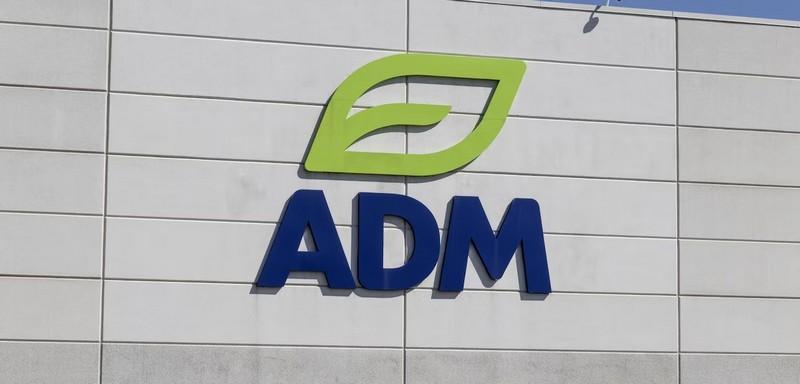 Vegetable Origin
Vegetable Origin
2+ MIN
14/10/2022
ADM celebrates 120th anniversary
ADM, formally known as Archer-Daniels-Midland Company and one of the world's largest human and animal nutrition companies with 41,000 employees in around 200 countries, celebrated its 120th anniversary. ADM was incorporated on Sept. 30, 1902, in Minneapolis, Minnesota, as a regional linseed oil business. Today, ADM – with 41,000 employees serving customers in nearly 200 countries – is an indispensable global agricultural supply chain manager and processor, a premier human and animal nutrition company, a trailblazer in groundbreaking solutions to support healthier living, a cutting-edge innovator in replacing petroleum-based products, and a leader in sustainability. 'Over the past 120 years, our company has evolved from a regional startup into an irreplaceable leader providing needed nutrition to billions around the globe. We've transformed at many moments along the way, but unlocking the power of nature to enrich lives has always been at the heart of everything we do,' said Juan Luciano, Chairman and CEO. 'Every day, our 41,000 colleagues demonstrate our purpose and our values, not only by feeding the world, but by building a stronger, better future, whether through innovations in sustainability, or our commitment to the communities where we work and live. I'm proud of the work they've done and the journey we've taken together, and I'm excited about our bright future.' To celebrate the milestone, ADM conducted a Fight Hunger Challenge to bring employees together around the world to raise money for hunger relief. As a result, ADM Cares has donated 1.2 million meals in partnership with the World Food Program, Feeding America and Food Banks Canada. by ADM
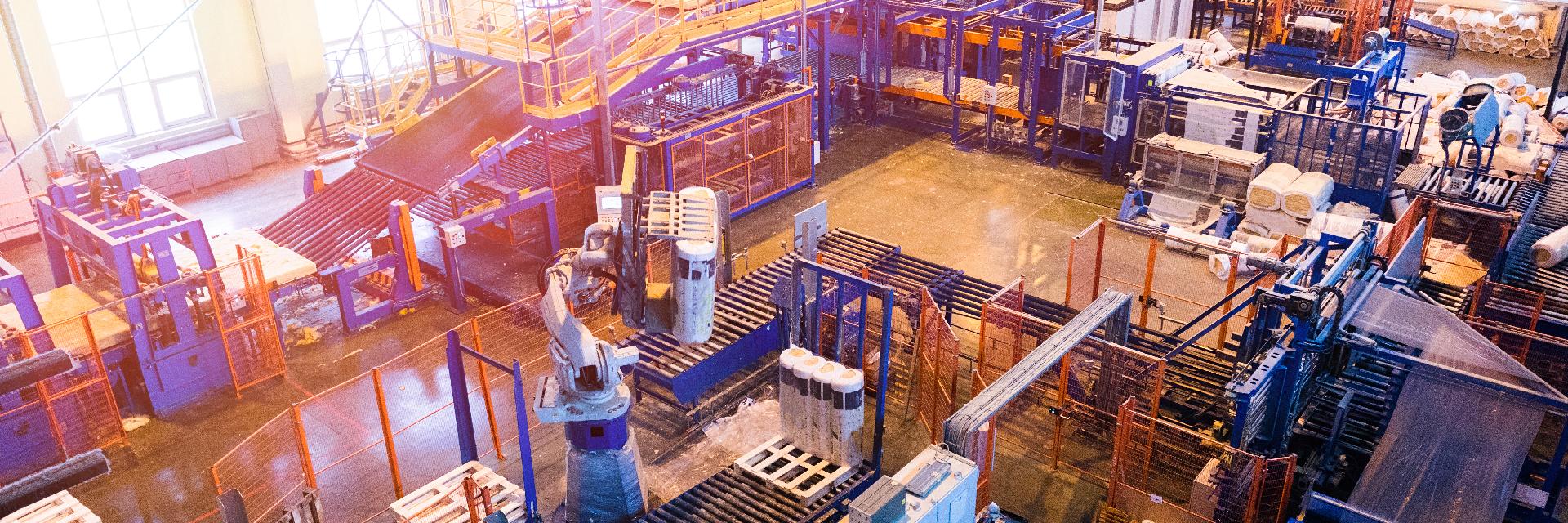 Manufacturing Process
Manufacturing Process
3+ MIN
13/10/2022
Por María Candelaria Carbajo
Main uses of automation in pet food production in 2022
Automation can bring great improvements and benefits in tasks such as: • Exact dosage of multiple additives (dry or wet) • Optimum control of the overall operation • Product moisture control for more profitable production • Reduction of waste products during startup and shutdown • Quick and dynamic formula change for more flexible production Advances in the automation of the pet food production process Time optimization Current automation allows the creation of considerably more efficient processes of instances such as filling, weighing, unloading, and mixing. Process time optimization may require a substantial initial investment, but the potential for short- and medium-term profitability gains is even more significant. It's mathematical: working more efficiently allows us to produce more in less time. In general terms, we can say that the most important thing is to improve the instance of processing time of the bottleneck, to meet the time of the upstream or downstream processes, and even improve them. Scale system improvements The weighing instance can be faster without sacrificing accuracy, but how? Finding the right scale and weighing strategy! For example, with a continuous mass flow weighing system, ingredients can be accurately measured without pausing the process. Or, if conveyors are used due to height restrictions, materials can be weighed and measured simultaneously with the movement. Finding the correct scale and weighing strategy can help dramatically improve efficiency while reducing product defects. In many cases, it is even possible to weigh ingredients without introducing an additional step. Automation of microingredients The manual addition of small quantities of ingredients is a temporary solution that can become, without our realizing it, a permanent part of the food production. Additionally, it is also an inefficient and inaccurate technique that can result in errors, defective products, and workplace hazards and can even make batch tracking difficult and formula tampering. Automating this task of the production process ensures uniformity and eliminates possible delays and dangers that manual addition entails. Since this automation would measure ingredients accurately, the formula doesn't rely on hand-added spoonfuls, and therefore there is less room for error and waste. Reprogrammable controls When mixing times change, microingredients are added, or processes change, the computer monitors and track those changes. This means, in many cases, rewriting the logic using the manufacturer's proprietary code, which requires a specialized technician. Instead, with a programmable logic controller (or programmable logic controller), with a user-friendly interface. Big Bag unloader Using a Big Bag Discharger instead of individual bags allows for lower packaging and material costs while improving efficiency and reducing workplace hazards. This automation can help save time and money significantly and is quite simple. Implementing it requires a safe and resistant unloader to facilitate the dispensing of ingredients. Connection between data The limit of automation platforms is given by the information collected and analyzed, which means that the more sensors there are at critical points, the smarter a system can be. Today, processors can accumulate facts and data in almost every area of the production process. Combining such data in an external analysis system provides us with valuable and powerful information to make better decisions. Data analysis gives us the power to decide in real-time based on real data. In general terms, the main benefits of automating production may be particular to the pet food market. However, they are mostly shared by various industries: • Improve accuracy • Optimize repeatable processes • Increase productivity • Facilitate scalability • Reduce waste • Reduce human error • Improve security • Processing and consistency of product quality The conclusion is simple: there is no question that automation is bringing significant changes to the pet food industry. Technological advances are helping to integrate different systems, tasks, operations, and processes more efficiently, precisely, and profitable today, both in the short and medium term. Source: All Pet Food
 Micro Ingredients
Micro Ingredients
4+ MIN
11/10/2022
Por María Candelaria Carbajo
Enzymes in pet food: uses, benefits, and challenges
A report by Verified Market Research estimates that the value of the global market for enzymes was 1,300 million dollars in 2020 and will reach 2,410 million dollars in 2028, with a growth of 8%. The pathway of enzymes in animal feed Enzymes were first used in feed more than a decade ago. At that time, its acceptance was limited to phytase applications to reduce phosphorus excretion. Today, the increased understanding of enzyme usage in feed comes with the market demand for high-quality protein for pets. Likewise, the increase in the animal and human populations, which share many raw materials, highlights the need to produce more in less time. Then, producers must maximize production times to meet increased protein requirements, including maximizing feed utilization. The growing demand for better quality pet food products, and the increased awareness of animal care and health, are driving the development of the feed enzymes market in the coming years. Types of enzymes used Commercially available enzymes can derive from plants, animals, and microorganisms. One of the applied methods to increase nutrient absorption is to increase feed digestibility, and enzymes are one of the widely used feed additives for this purpose. Those that currently stand out as additives are: 1. Proteases: These are preferred in young animals to increase the rate of digestion and absorption of plant proteins. 2. Carbohydrates: This allows animals to benefit more from energy by breaking down carbohydrates in grains used as feedstocks (such as barley, oats, and corn). 3. Lipases: They carry out the hydrolysis of fats. 4. Phytases: Increase the availability of vegetable phosphorus. Benefits of enzymes in animal feed The functions of enzyme additives in the feed market are essential to increase the digestibility of nutrients in animals. In fact, it's even more important in cases in which the nutrients cannot be digested for different reasons. This implies, first of all, a better capacity of the animal to benefit from what they consume. Some specific benefits are: ● Intestinal viscosity reduction is due to a greater polysaccharides' decomposition from the cell wall of cereals. ● Higher values of digestibility and metabolic energy of food. ● Greater absorption of nutrients. ● Higher live weight gain with lower feed intake. ● Better phosphorus digestibility and lower level of it in the feces. In addition, enzymes are especially important for elderly pets or those with chronic conditions, such as exocrine pancreatic insufficiency, small intestinal bacterial overgrowth, or chronic pancreatitis. Likewise, it is necessary to clarify that, since enzymes improve the digestibility of plant-based feed ingredients, they offer economic benefits for animal production. Enzymes have enabled animal feed producers to improve their feed conversion rates, the uniformity of their herds, and the efficiency of their feed mills. As a result, savings in feed costs and livestock overhead as a positive impact on pet food costs are achieved. Main challenges of using enzymes Financing for R&D One of the main challenges today in increasing the use of enzymes is/ are? High investments in R&D are needed to advance with the research and development of enzymes for use in high-quality feed at competitive prices worldwide. For example, laboratories require greater infrastructure strength to use molecular techniques, such as metagenomics and genomics. The right dose Enzymes should be added in carefully measured amounts to formulas, considering the type of animal each feed is prepared for. It is also important to have a clear idea of the potency of the enzyme and what is the appropriate dilution for each one. The metering and mixing system for enzyme and carrier must be highly accurate and regularly calibrated, to ensure food safety. Heat resistance Enzymes added to the feed prior to pelleting must be heat stable or capable of losing some potency without losing their overall effect. Most enzymes will start breaking down when exposed to temperatures above 150º C, which is a problem because high temperatures are required to kill bacteria. To solve this, the enzyme needs protection from the heating process, applied in amounts where the heat does not completely destroy it, applied after the heat process, or a heat-stable enzyme used. Granulation resistance Feed batches require optimum levels of moisture and density to retain their shape. If dry enzymes added to the mix reduce the moisture content beyond a certain level, product loss and waste can result. This problem could be solved with careful tests, gentler treatment of the granules, or through the use of enzyme applications for animal feed, after the granulation process, for example. By way of conclusion, we can affirm that research on the different methods of enzyme production assures their benefits and epigenetic effects, for example, on the formation and development of the intestine and the interaction with the microbiota and intestinal health, as well as their direct or indirect action on the immune system. As the research of these components moves along, we will be able to implement them more and more and revolutionize the animal nutrition industry. Source: All Pet Food
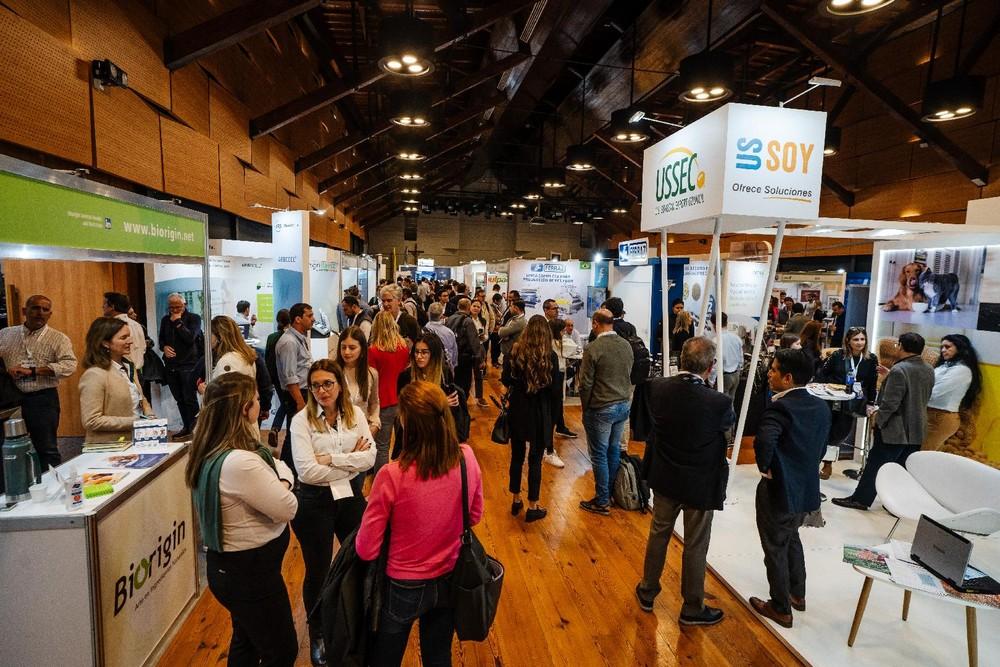 Market Information
Market Information
1+ MIN
10/10/2022
CIPAL 2022: A shared success with the entire pet food industry!
Almost 700 people including visitors, speakers, exhibitors and sponsors, from Argentina, Chile, Brazil, Mexico, Colombia, Peru, Paraguay and Uruguay, as well as from different European countries and USA, came to visit us to exhibit and share its technological innovations, research and new proposals for the market. We´re so proud to count with their presence, some independent and others representing leading companies where they hold key positions when making relevant decisions for te pet food industry. The results we can show today are thanks to their collaboration prior to the event, we want to thank all of them: To the speakers because the quality of their conference gave rise to a constant training spot, which provided great knowledge and Innovation to the pet food sector. To the exhibitors for contributing to a complete exhibition hall and a networking space, which surely generated new business opportunities and projects in the short term. To the sponsors for showing their brand in all the services that improved the stay of all attendees. And to all professionals of the industry for coming to enjoy and give life to an enlightening experience We look forward to seeing you at our next edition CIPAL 2024, to renew our commitment of bringing together "the entire pet food industry in one place' By All Pet Food
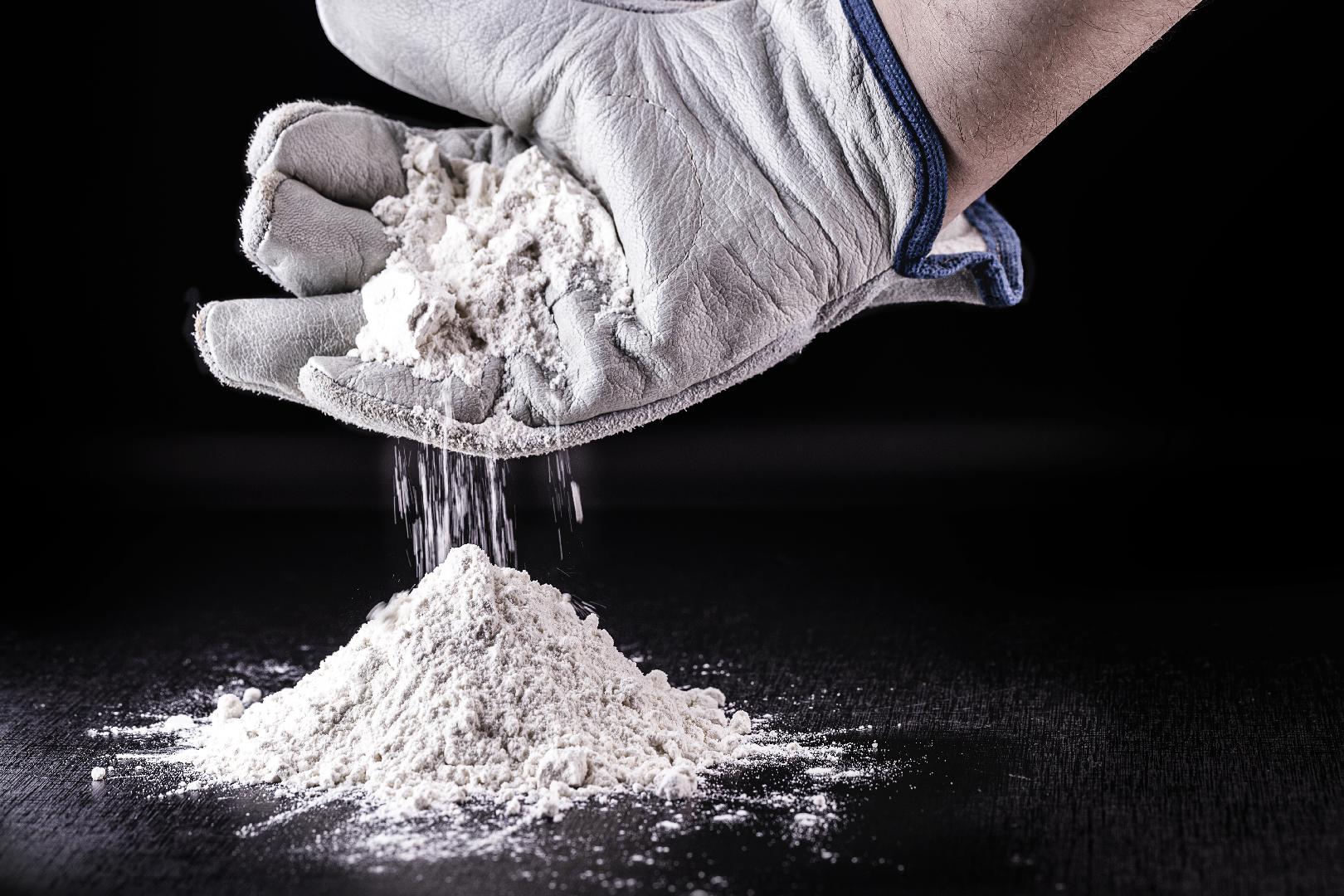 Micro Ingredients
Micro Ingredients
4+ MIN
06/10/2022
Por María Candelaria Carbajo
Are there alternatives to titanium dioxide?
Since then, the search to find a natural substitute for titanium dioxide has become very relevant, both in laboratories, companies and even at industry fairs and events. But what, so far, are the alternatives to titanium dioxide as a pet food bleach? The company Mintel carried out a study that found that the launches of new products with titanium dioxide began to decrease as early as 2019, even in the candy and snack market sector, the main users of this ingredient. This began with the suspicion that, sooner rather than later, this ingredient would be banned or at least discouraged in Europe (and it was). Titanium dioxide is used, in most cases, as a whitening and opacifying agent to achieve uniform materials that allow colors to be added or altered. Mixing different proteins, grains, and vegetables in pet food base formulations often creates an unpleasant and uneven color, resulting in color inconsistencies in the final product. The bleaching agent is used for merely aesthetic reasons, where the products are intended to be more uniform, more attractive, and, therefore, more inviting to consumption. The truth is that, nowadays, color (and everything visual, really) is an important differentiator when making a purchase decision: color, in the case of food, is usually associated with concepts such as fresh, healthy, wholesome, poor quality, as is the case with green for vegetables, red and brown for protein, or orange for squash and sweet potatoes. For example, a 2019 study by Sensient found that brightly colored food is up to 5 times more likely to be chosen than dull brown food. However, and despite the benefits it may provide to the superficiality of the aesthetic, the EFSA concluded that the recurrent genotoxicity problems after the ingestion of titanium dioxide particles, determined in the latest studies, are important enough to restrict its use in pet food. And, although through oral intake, the absorption of titanium dioxide particles is low, they accumulate in the body. Thus, even though the evidence of toxic effects is not yet conclusive, we can't say that titanium dioxide Titanium is a safe component, free of side effects for animal consumption. Alternatives to titanium dioxide When we think of colors associated with pet food, orange, red, terracotta, and bright yellows come to mind... But none of them could exist without "the other color", the white resulting from the use of carbon dioxide titanium. This ingredient is not limited only to the pet food industry but has been used in toothpaste formulas, sauces that must have a dairy appearance, or canned food. What are the options for titanium dioxide today? Starch-based options The starch-based options with the biggest presence are rice or corn; they can be used as opaque agents in certain cases, such as soups and sauces to achieve a "creamy" look or to create opaque confections. Those who have tried it affirm that the effect is not the same as that achieved with titanium dioxide, but it is similar. Rice starch Another alternative is rice starch. Its pros: it is cheap and achieves a similar effect. Cons: It can retain more moisture and thicken, making it useless for working in large quantities. Those who produce and promote it claim that it is especially suitable for smooth, white, and shiny finishes (because of its small particles). Small grain native cereal starch Native wheat starch is another option to deal with the new regulations. It is an alternative that achieves the same effects as titanium dioxide, while it's a natural and renewable raw material. This type of starch is dispersible, fluid, with a neutral flavor, and digestible. Each starch granule is less than 10 μm, so it includes ten-more-time particles than conventional corn or wheat starch in the same volume. Calcium carbonate Calcium carbonate is a natural, bright white, microcrystalline mineral. In addition to its whitening properties, it provides calcium and strengthens the bone system. However, in specific cases, calcium carbonate can affect the consistency and texture of the final product. Also, its use with pHs below around 3.0 is not advised. Another drawback is that its particle size is much larger than titanium dioxide, and its chemical structure makes it less effective at reflecting light. Although not the same as titanium dioxide, it is a successful choice for uses as a white coating on candies and a clouding agent in sauces and soups. Calcium carbonate is allowed as a food colorant in the EU, US, Australia, and New Zealand. Conclusion While the ban on titanium dioxide only relates to Europe, for now, all markets need to start researching and looking for alternatives to a product that is discouraged due to potentially significant side effects. Thus, if we add to this the growing demand from customers and consumers to have more natural ingredients in their pet food, the popularity of new ingredients such as rice starch, for example, will only grow. Other suppliers are already encouraged to combine starches with minerals to optimize the functionality of this component. According to Commission Regulation (EU), 2022/63, foods and beverages containing titanium dioxide can be marketed until August 7, 2022, and can remain on the market until their expiration date. After August 7, the additive will no longer be allowed in EU food manufacturing or imports to the European market. Considering the market news, there is no doubt that, in Latin America, we must start moving towards a pet food industry free of titanium dioxide and look for alternatives that are just as profitable and effective, but safer and more natural. Source: All Pet Food
 Market Information
Market Information
3+ MIN
04/10/2022
How does inflation impact Pet Food producers?
Among the most relevant questions are, what is the net effect of current pet food inflation on manufacturers' profits? Are producers likely to benefit from price increases? And finally, are manufacturers made better off, or worse off by rising inflation? It would be complex to generalize a single answer for all companies since the situation of each producer is different. Therefore, we must analyze each case using the following premises. Raw material costs are the key First, it is important to clarify that when consumer price increases originate from production cost pressures, the manufacturer only compensates for a reduction in profits. In this sense, each manufacturer has a variable cost structure, different sources of supply of materials, and certain market power. With these three elements, we can know who loses and who can win with inflation. Although it is true that each manufacturer has different costs, these do not vary significantly since the ingredients and raw materials are basic products subject to global prices. Small differences in each manufacturer's sourcing costs and market bargaining power are likely to make a difference to their short-term pricing strategies. For example, raw materials represent 60% to 80% of a pet food producer's operating costs. The 20% gap represents how flexible a producer can be in an environment of rising production costs. In other words: while the producer depends less on raw materials, the more flexibility he has to play with his cost structure. On the other hand, it is important to point out that various pet food manufacturers are self-sufficient in supplies since they are also the owners of the raw material. This represents an advantage over other producers who source elsewhere at market prices. According to a Triplethree International report, under normal economic conditions, a profitability scenario for pet food manufacturers would be between 45% and 55% of gross profit, and between 30 and 40% of profit margin before interest, taxes, depreciation, and amortization (what is known in English as EBITDA, for its acronym in English). These proportions are much higher than other consumption categories, for example, cattle feed, where profits are significantly lower. This explains why countless animal food producers enter the pet food business, as the profit margins are attractive. Inflation is changing industry profits The truth is that pet food and general inflation are reshaping the pet food industry's usual profits. For example: let's say that, in a certain market, the inflation faced by pet food producers reaches 10% in the year 2022. In this sense, the usual profits will tend to fall in a greater proportion since other indirect expenses will also grow, a product of inflation. Therefore, the profitability scenario mentioned above, between 30% and 40% of gross profit, could be seriously diminished, forcing less efficient producers to withdraw from the market or at least to carry out cost reengineering strategies. Finally, it is important to note that price adjustments in pet food are necessary to keep the business running, and more importantly, to maintain attractive profit margins for the industry and encourage investment in the sector. Source: Triplethree International
 Dogs
Dogs
4+ MIN
03/10/2022
Good Digestion for Your Pet
These days you can hardly pick up a health magazine without reading about the positive benefits of good digestion. After teaching the value of gut health for 20 years, I'm so grateful many types of health practitioners are now understanding how critical a healthy gut is to a healthy body. However, most pet parents don't think about how essential good digestion is for their beloved dog or cat. My goal here is to explain how valuable and easy it can be to support your pet's best digestion so he can live his most vibrant life. Health Starts in the Gut Humans and their pets share very similar physiology, with the similarities outweighing the differences. Poor digestion sets the stage, in both humans and their pets, for obesity, joint issues, liver stress, anxiety, and many other chronic disorders. It's quite probable you've heard of the 'microbiome.' This term is used to describe the entire community of bacteria and other microbes residing in your gut. This intestinal community has billions of different critters dwelling together, some beneficial and others problematic. Your Pet's Microbiome Your dog or cat has a microbiome too. In the simplest terms, when digestion is impaired, most often the first result is an imbalanced microbiome, meaning the ratio of beneficial microbes to the problematic ones shifts. Over time, the gut environment becomes toxic due to the chemical result of the bad bacteria acting on undigested food. This in turn causes inflammation of the lining of the gut, allowing toxins into the rest of the body and decreasing efficient absorption of necessary nutrients like vitamins and minerals. Toxicity, along with nutritional deficiencies, sets the stage for chronic illness of all descriptions. We don't want to let that happen. Enzyme Deficency and Your Pet Another important aspect of digestion has to do with enzymes, which are essential for all chemical processes in the body, including digestion. Without the proper enzymes, foods can't be broken down into life-giving amino acids, minerals, and vitamins. In a functional gut, nutrients are then absorbed and used to maintain all aspects of health. Enzymes are largely created by the pancreas, stomach, and small intestine. However, your pets were designed to get some supplemental enzymes from the foods they eat. When wolves and coyotes hunt and kill animals in the wild, they eat some of the entrails, 'the guts,' which helps them meet their digestive enzyme needs. Of course, we typically don't feed our dogs and cats the innards they'd be getting in the wild. The sad result is that most pets in the US can easily be enzyme deficient. Processed Foods are Bad for Pets too By far, the most detrimental impact to your pet's digestion are the processed foods that most dogs and cats eat daily. Even many of the most expensive varieties are completely void of appropriate quantities of essential nutritional components like probiotics and enzymes. In my book, Natural Pet Care for Dogs, I delve into all of this information deeply. However, I hope from this brief introduction you can begin to understand why supporting your pet's gut is critical to his long-term health. I'd like to share two simple and effective ways to easily provide digestive support to your animals beginning today. Digestive Supplements for Pets Probiotic Support Tips Look for a probiotic supplement that provides a minimum of 20 billion live cultures per serving so your dog or cat receives a sufficient dose of friendly bacteria. Blend should include a minimum of 10 unique strains (different kinds) of bacteria, including Lactobacillus and Bifidobacterium. Don't be fooled by products containing just one or two strains. Supplement should contain clinically studied animal strains like B. animalis. d. Prebiotics are required within the product. Beneficial bacteria feed on prebiotics, which helps ensure they multiply and survive until consumed. Enzyme Support Tips Best formulas are powdered and easy to sprinkle on your dog or cat's food. Look for an enzyme blend formulated to support the dietary needs of canines or felines. Formula should contain protease, amylase, and lipase to assist with protein, carbohydrate, and fat breakdown. Some formulas contain ingredients like organic pumpkin, fennel, and ginger. Pet-Friendly Superfoods flax alfalfa carrot pumpkin turmeric blueberry spinach You may even find a product that offers probiotic support and enzyme support along with superfoods, all in one. Bottom line, the easiest way to maintain your pet's healthy digestion and overall vitality is to make a commitment to bringing your dog or cat's dead food back to life. BY BRENDA WATSON, C.N.C.
 Trends
Trends
5+ MIN
29/09/2022
Por María Candelaria Carbajo
Towards sustainability: dichotomies and challenges in the Pet food industry
What do we talk about when we talk about sustainability? We speak of sustainable practices when the needs of the present are fulfilled without compromising the ability of future generations to meet their own. Sustainability has a great objective: to guarantee a better life quality for all in a way that can be sustained in the long term. If we expand the concept of sustainability, we find that it is not only about caring for the environment: it also refers to social equity creation and long-term profitability increase. Based on these two concepts, a sustainable product will never become such if, at least, it does not achieve social equity or have growing profitability in the long term. 'A sustainable food system provides healthy food to meet current food needs while maintaining healthy ecosystems that can also provide food for future generations, with a minimal negative impact on the environment.' APHA Definition Sustainability is a shared goal We cannot talk about sustainability without being aware that our industry is interdependent with many others simultaneously. Therefore, we cannot talk about sustainability without considering the ecosystem around the pet food industry. If we want to create a more sustainable industry, we must think about ecological, social, and economic aspects that not only impact us but the entire food system in general. The interdependence is endless: from sourcing and choice of ingredients, through marketing, packaging, and distribution, to carbon and water footprints, which vary greatly between plant- and animal-based ingredients, production strategy, and geographic location. To speak of a "sustainable" production process, we must measure several factors, such as: land use, waste management, greenhouse gas emissions, and biological diversity. That is because it is not only a matter of measuring how much plastic waste we cause but also of evaluating the real environmental impact of all the life stages of our products in terms of global warming, eutrophication, acidification, photochemical smog, and land use, among others. This situation can be seen at the local, national, regional, and international levels. Furthermore, if sustainability advocates for social equity, it also considers promoting local production and distribution infrastructures, the affordability and accessibility of food for those who need it, and the protection of farmers and other workers, consumers, and communities involved in the system. Thus, as the industry uses by-products of human food production, it is intimately related to livestock production and the human food system. That is a challenge in itself: while we are already involved in the sustainability of systems using what for others is a waste, we face pet owners increasingly demanding cleaner and more transparent labels. And from the logic and (lack) of knowledge that most of them have, in terms of nutritional quality, the by-products or waste of food production for humans are synonymous with poor quality. The core concept: nutritional sustainability Applying these concepts to pet food production, we seek an industry with nutritional sustainability in which we are able to provide enough energy and essential to maintain the good health of the animal population without compromising the ability of future generations to meet their own nutritional needs. And yes, a component of the sustainability of a food system must essentially be its ability to provide adequate and safe nutrition to its end users. But is that all? Of course not. As part of it, food can affect health not only because of its nutrient content and the amount consumed but also because of non-nutritive components, such as pesticides, fertilizers, preservatives, heavy metals, and microbiological contaminants. Indeed, many food systems may be nutritionally sustainable, yet the ecological, social, and economic aspects of sustainability need to balance to support comprehensive sustainability. To be clear: The current global food system is nutritionally unsustainable… for many reasons In developed countries, excessive consumption of highly processed and inexpensive foods high in sugar, saturated fat, and sodium has been a key contributor to the epidemic of obesity and obesity-associated diseases in humans. In contrast, the unavailability of affordable, nutrient-rich food in developing countries keeps contributing to hunger and malnutrition. In the near future, and if we continue down this path, this condition will only worsen as more crops such as corn, wheat, sugar cane, and palm oil (among others) are used for ethanol production or biodiesel and compete directly with food production. Furthermore, if we consider that most countries with the highest population growth are underdeveloped with poor economies, political instability, or inadequate agricultural land, what we can predict is not exactly... encouraging. The important thing is: what are we doing? Upcycling This is a new word for something that, in the industry, we have been doing for a long, long time. It consists of using waste from human food production that would otherwise have been wasted; we are talking about meat by-products and vegetables with non-standard shapes. ● We are exploring new alternatives as protein sources such as insects, peas, or algae. ● We are looking for alternatives to potentially harmful micro-ingredients like titanium dioxide. ● We are evaluating the incorporation of new supplements such as prebiotics, postbiotics for pets, apple cider vinegar, or nutraceuticals. Packaging Once pet food is produced, we face packaging dichotomies. Pet owners want containers with low environmental impact yet beautiful, colorful, practical, and convenient: resealable or single-serving containers that keep contents fresh for a long time. Due to a need for marketing and differentiation in the market, packaging (especially premium and super-premium quality) tends to be made of high-barrier materials with very bright and colorful graphic prints. Transferring this type of packaging to renewable resources or with low environmental impact is difficult today. ● Re-use: While working on the research and development of more sustainable materials, many companies choose to offer reusable containers with refill systems. Thus, although the material is harmful, reducing its amount, pollution and impact is reduced. ● Clean (and educational) labels: It's not just about being transparent about food content but about educating consumers about our choices. If we never take care to make pet owners aware of the benefits of, for example, insect-based formulas, it is very likely that this raw material will never be accepted as valid as dry pet food. ● We are promoting paper bag usage since they have a lower carbon footprint. ● The use of recyclable plastic is being promoted to create single-use packaging. In summary We can say that the food system does not meet the needs of present generations, so it fails even before reaching future generations. Undoubtedly, industry professionals must begin to think about and evaluate the current supply chains and systems and allocate new resources. As a result, we will create new resources to approach, little by little, a more sustainable process in all its senses. And although it is a path that still has a long way to go, more and more ways are being found to innovate with alternatives and more sustainable ingredients and raw materials. Today we have the opportunity to address these challenges and positively impact the sustainability of the pet industry through the redesign of products and manufacturing processes and promoting public education and favorable policy change for the care of the ecosystem. Pet foods made with sustainable ingredients are the future. Source: Pet Food
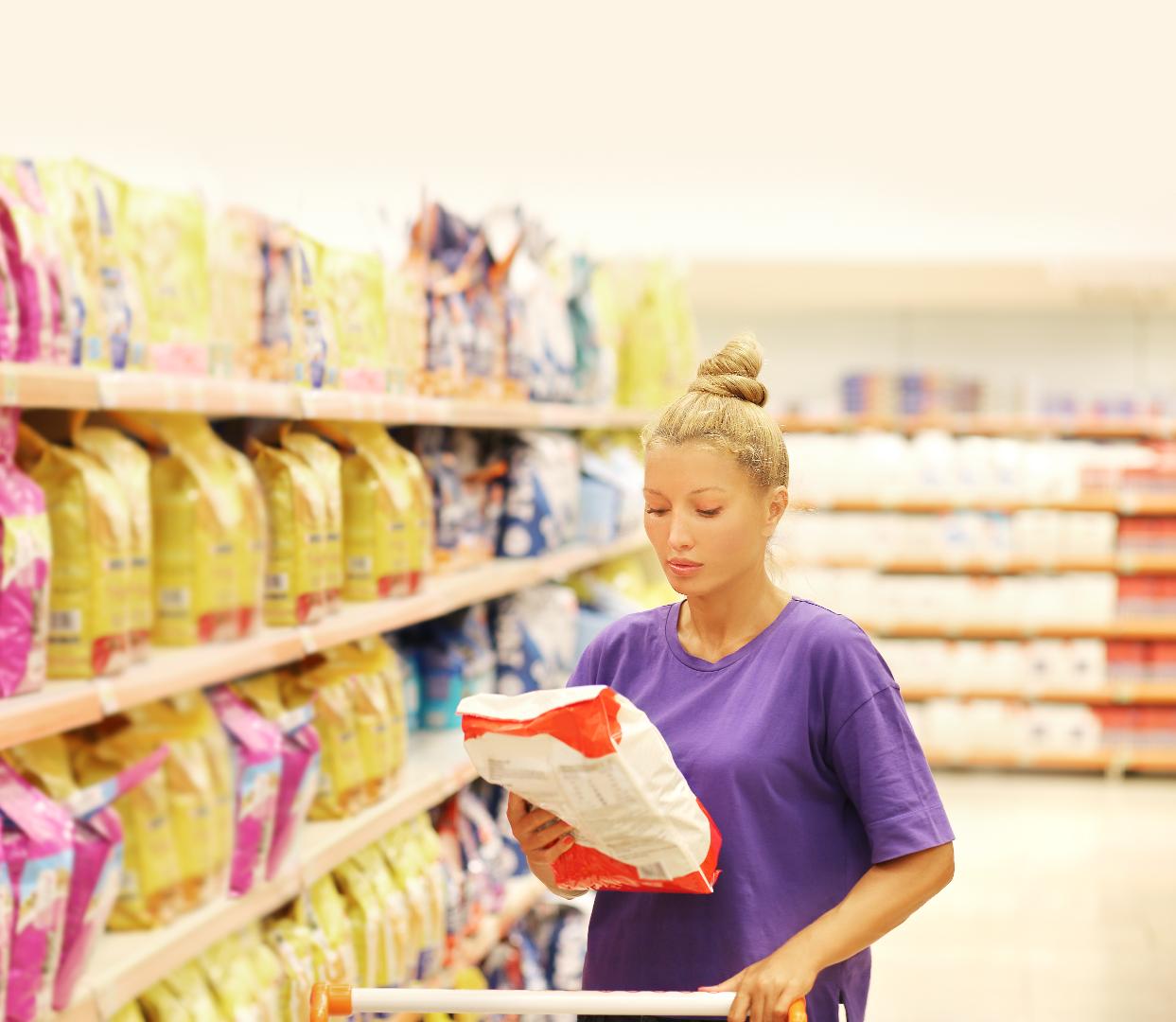 Market Information
Market Information
4+ MIN
27/09/2022
Por María Candelaria Carbajo
Factors that determine the purchase decision in Pet Food
But what are the factors that determine purchasing decisions in the Pet Food world? ● Humanization, above all We cannot say that this factor is a key aspect of the food itself, but seeing how this trend has become highly present in recent years, we cannot leave it out. That is a fact, and we already know it: pet humanization is one of the biggest trends in the pet food industry. In this sense, we can affirm that health care awareness in a preventive and not a curative way (that is, acting before diseases appear) results in greater access to information. Today, pet owners choose based on the ingredients, food quality, and specific benefits beyond price and packaging. It is remarkable that this is a movement that, without a doubt, allows us to consistently improve the market because we can compete by offering different alternatives and not just looking for the lowest price. Thus, for example, we see how new proposals arise that seek to respond to the new demands for "grain-free," "natural" or "high protein" food; not to mention the search for food that can meet the specific needs of a pet group, such as neutered cats or large breed adult dogs. Use case: United States A study was carried out to determine the main purchase determining factors of the inclination toward one Pet Food product or another. The survey was conducted with 1,209 dog owners and 972 cat owners. It should be noted that, in the last country statistics, 68% of its inhabitants had at least one pet. Factors influencing Pet Food choice Sources of dietary or nutritional information Yes, for more than 43% of those surveyed, their veterinary health care team is their principal source of information about food for their pet. In the second place, there are Internet sources, with more than 24% (it is, therefore, important to inform with knowledge and verified sources). We can understand, logically, that, hand in hand with humanization, just as we listen to our doctors and the recommendations on how to take care of our health, it is also being done, progressively, more and more with veterinarians. It is not strange to imagine a novice pet owner asking their veterinarian what Pet Food brand they recommend the most, right? However, the majority of those surveyed agreed that the most important thing is to provide the pet with the best possible nutrition, one beneficial for them and of stable quality; and feed them with an appropriate diet for each particluar condition. Food characteristics The characteristics of the food that, according to the survey, are considered most important when choosing are: ● Nutritional capacity ● Quality ● Ingredients ● Freshness Surprisingly, the least important were: ● The sale (It means its space in the market) ● The color ● The packaging ● The absence of gluten Labels To understand the role of calorie labeling in pet food purchasing decisions, participants were asked about their use and awareness. The majority (74.9%!) stated that they were aware of this label type, but only 52% of them indicated that they use or look at this information. Health prioritization How important is it to buy healthy food for ourselves? And how important is it to buy it for our pets too? Health prioritization showed that at least 53% of pet owners think their health is as important as their pets' health. (health prioritization gap = 0). Surprisingly, 43.6% had scores indicating higher importance in buying healthy food for their pets, and only 3% stated a higher priority for themselves. Price and brand loyalty Surveyed were asked how important changes in food cost were for them versus their pets. And in this case, the price change in human food turned out to be more important than that of pet food. Likewise, pet owners claim to be more loyal to pet food brands than human food brands. Conclusions The majority of survey participants want to feed their pets the most nutritious diet possible. Results indicate that pet owners evaluate wholesomeness, freshness, and pet food ingredients when making purchasing decisions. While it is encouraging that owners are trying to feed their pets the best nutrition possible, the truth is that, at the end of the day, most are not experts in animal nutrition and can misinterpret or understand certain information, either due to lack of knowledge or unclear marketing strategies or that promote benefits with a lack of scientific evidence. An example of this is what was seen in the survey, where 3% of respondents stated that they feed their pets raw food when, in fact, there is still not enough evidence that the raw diet offers the same or more benefits than the traditional diet, without increasing health risks. There is no doubt that better education is needed from veterinary health professionals and manufacturers to continue providing tools to pet owners. This way, they can make intelligent decisions based on verified information. Let's consider the context We know, then, that the highest-ranked pet food characteristics were health and nutrition, quality, ingredients, and freshness (at least for US pet owners). Additionally, the focus on ingredients and good nutrition may reflect how trends in human health and nutrition have begun to spill over into the world of pet health. And although this is something that can spread worldwide because we are seeing it in all the local pet food markets, it should be remembered that, after all, the choice of pet food also depends on the economic, political, and society in which people find themselves. We encourage the data from this survey to be a reference, but not the last word about all markets, since each country, each city, has its particularities. Source: All Pet Food
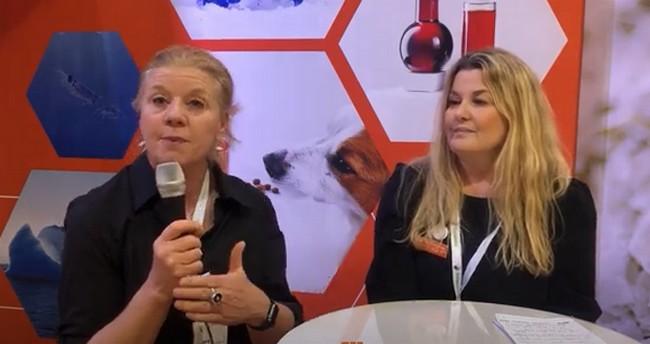 Interviews
Interviews
1+ MIN
23/09/2022
Interview with Qrill Pet and Pet Sustainability Coalition
The PSC envisions a thriving and collaborative pet industry, creating positive impact for communities and environments globally. Together, QRILL Pet and the PSC are working to ensure happy and healthy pets by creating a more sustainable pet industry.
The All Pet Food Team met Anne Klein, Director of Member Services at PSC and Gunhild Yksnoy, Custumer Business Development Director of Qrill Pet at Interzoo 2022 to conduct an interview highlighting the position of both companies regarding Sustainability within the pet food sector. Enjoy it!!
by All Pet Food
 Palatants
Palatants
1+ MIN
22/09/2022
Expanding our North American Footprint
Due to this industry growth, AFB International is excited to announce in a recent news release our third North American manufacturing site in Columbus, Georgia – investing more than $79 million in the new facility and creating more than 100 new jobs in the next five years. The construction of a new plant demonstrates the strength of our industry, our customers, and our company. Andy Zenor, Senior Director of North America said 'We received a lot of feedback from customers … all of it positive. Customers were really excited to see this investment by AFB to support their growing demand. It really shows our commitment to the industry.' Columbus, Georgia is a thriving community with rich backgrounds in food manufacturing and science and technology. The area is home to several technical colleges and post-educational establishments, along with Fort Benning, to provide a strong, diverse talent pool. 'AFB is excited to become part of the Columbus community. We are proud of the work we've done since 1986 to make pet food taste great, and pleased to continue our growth with the talented workforce in the Columbus region,' said Jared Lozo, President of AFB. Even though operations at the Columbus plant are not expected to fully begin until 2024, AFB's Human Resources team is starting the recruiting process early. A few positions will be hired to assist with the facility construction starting in 2023. Check out the Careers page and apply today. by AFB International All Pet Food
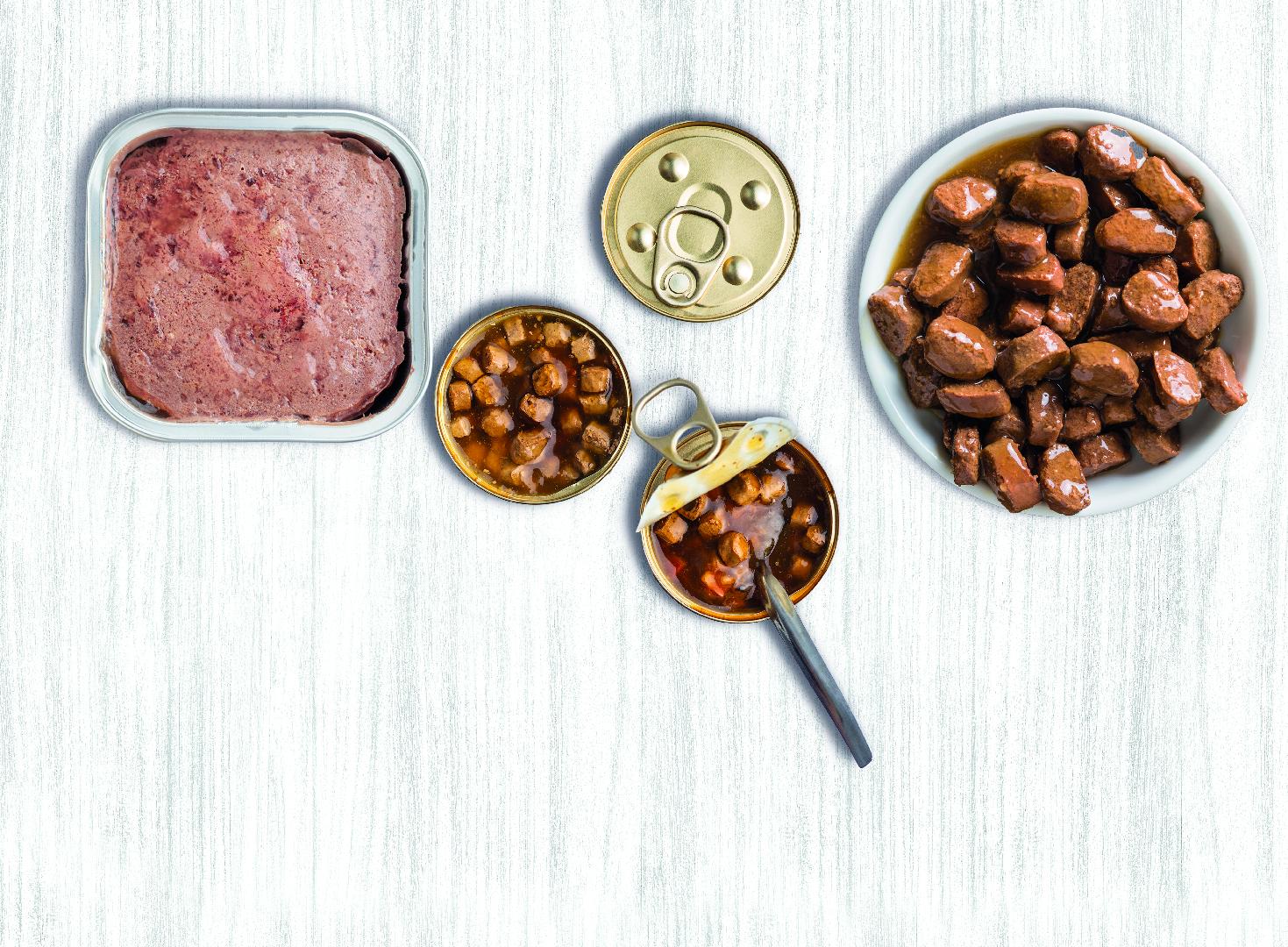 Formulation
Formulation
4+ MIN
20/09/2022
Por Ludmila Barbi T. Bomcompagni
Critical points in the development of wet food
According to Euromonitor, in 2021, the volume of wet pet food sold in Brazil was approximately 72,000 tons, with a turnover close to 2 billion brazilian reais. This results in a growth of 18% for wet food for cats, and 5% for dogs in the year 2021, compared to 2020. Moist foods, those with humidity greater than 60% according to FEDIAF (2021), are the ones that most resemble fresh foods, which in turn refer guardians to the feeling of providing health and wellbeing to their pets through the food. The development of wet food differs from dry extruded on several points, one being processed. Among many process options, we have extrusion, moist or dry heat cooking, autoclave sterilization, and freezing, among other technologies that guarantee the quality and safety of the final product. But, in addition to the production process, we point out other factors that we consider important in the development of this category of food. Formulation Initially, the formulation of wet foods differs in the choice of ingredients. We can use cereals, flours, and bran in the formula, but there is the possibility of using inputs with a lot of moisture, such as fresh meats and organ meats, vegetables, and fruits, in addition to other sources of nutrients that are limited in the composition of dry foods. As the natural moisture of the ingredients is still present in the final product, its energy density is lower since the nutrients are more diluted. Therefore, in moist and semi-moist food, even if they are complete, the metabolizable energy tends to be up to 4 times lower than in dry extruded food. The metabolizable energy (ME) of cat and pet food is the most accurate measure to express its energy density. The way to calculate the ME of food can be through live digestibility or through prediction equations. Recent studies (Calvez J et al. 2012a, Calvez J et al. 2012b) that compare the precision between the modified Atwater method versus the equations cited by the National Research Council (NRC, 2006) to estimate ME have shown that both provide an equally moderate precision of estimation of the ME, for wet food for dogs and cats. Therefore, formulating the complete wet feed using the FEDIAF (2021) recommended nutrient profile table, based on caloric content rather than dry matter, is the best option to ensure that the requirements of each essential nutrient will be consumed (every 1000 ME kcal of food intake). Palatability The nutritional composition and functional benefit claims attributed that pet food is a strong influence on the owner's purchase decision. However, it is useless to offer pets a correctly balanced food with functional ingredients if it does not consume it. To ensure the correct consumption of industrialized food, whether dry, semi-moist, or moist, it must be tasty and stimulate the pet's appetite through factors known by the pet food industry as "palatability drivers". For this reason, having scientific proof of dogs' and cats' food preferences is essential to develop a palatability agent and test its performance in the product intended. Wet food, by itself, is already recognized by guardians as more palatable or attractive to pets than dry foods. However, the basic composition of the product, the type of processing, the palatability, and the type of packaging, in addition to the pet's eating habits and familiarity with this category, still have an influence. Palatabilizers can be found in liquid or powder form and are produced through the process of enzymatic hydrolysis of animal products and their main function is to attract the dog or cat through the release of aromatic molecules when food is offered. After being applied to the food, palatability measurements must be carried out in specialized panels to verify the increase in performance provided by the additive. The factors that drive palatability in wet food still need to be further explored, but it is already known that the use of plants in the formulation has the ability to increase its appeal compared to the same version without them. Water activity (AW) The control of water activity in dry or wet-processed foods is essential to ensure their quality. The water must not remain entirely in the form of free water since it acts as a means of dispersing nutrients for the development of microorganisms and chemical-enzymatic reactions. To prevent the activity of fungi, yeasts, and bacteria in dry extruded food combined methods are often used, such as drying or dehydration, so that the wáter activity reaches between 0.6 and 0.62. In the case of moist food, high water activity is normal, which if not adjusted will approach 1, reducing its shelf life. To reduce these, we can add solutes, pH control, and conservation methods. However, there is still the possibility of increasing the occurrence of enzymatic and non-enzymatic browning reactions, including fat rancidity, which makes difficult its process (and antioxidants and acids are used to lower the pH). Even so, free water is necessary so that the sensory qualities (softness, chewiness, palatability, among others) are the best possible. In general, in moist and semi-moist products for dogs and cats, we reduce aw with the use of technological additives such as thickeners, stabilizers, and emulsifiers: gums, glycerin, lecithin, propylene glycol, carboxymethylcellulose and even ingredients that also help reduce it, such as starches, sugars and sources of soluble fiber. By: Eliane Gil Gatto, Ludmila Barbi and Erika Stasieniuk
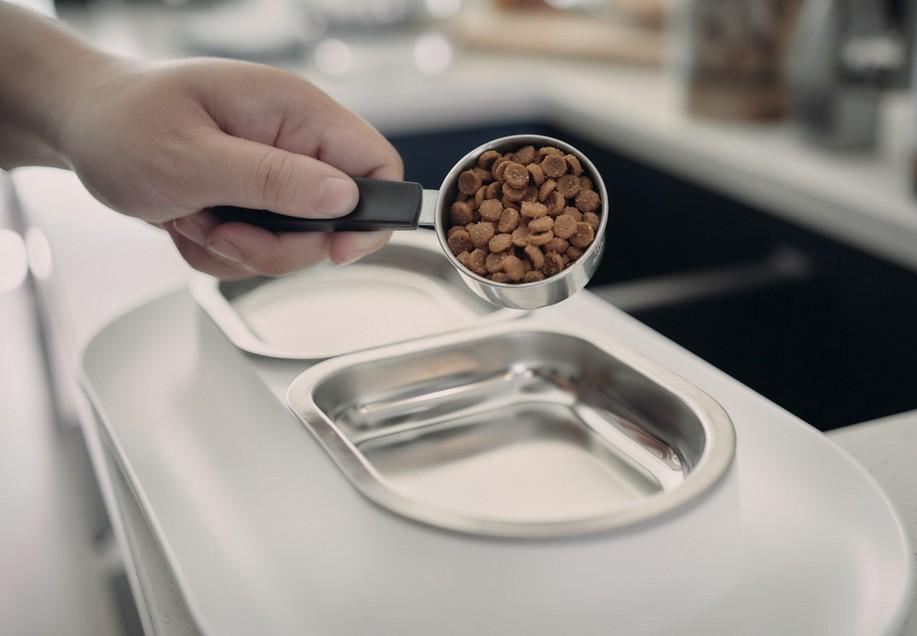 Dogs
Dogs
2+ MIN
19/09/2022
Most U.S. dog owners don't follow FDA pet food handling guidelines, study finds
A new analysis suggests that most U.S. dog owners are unaware of -- and do not follow -- guidelines on safe pet food and dish handling from the Food and Drug Administration (FDA), but that better education and implementation of the guidelines could reduce contamination. A new analysis suggests that most U.S. dog owners are unaware of -- and do not follow -- guidelines on safe pet food and dish handling from the Food and Drug Administration (FDA), but that better education and implementation of the guidelines could reduce contamination. Dr. Emily Luisana of North Carolina State University in Raleigh and colleagues present these findings in the open-access journal PLOS ONE on April, 2022. Pet food and dish handling involves potential health risks for both dogs and people, especially those with compromised immune systems. Multiple outbreaks of bacterial illness among dogs and humans have occurred as a result of contaminated dog food. The FDA has issued guidelines on protocols for safe pet food and dish handling, available online, but the information is limited, and the effects of the recommendations have been unclear. To help clarify, Dr. Luisana and colleagues surveyed 417 dog owners. They found that less than 5 percent were aware of the guidelines, and many owners did not follow many of the recommendations. For instance, only one third reported washing their hands after feeding, and only two thirds reported preparing dog food on separate surfaces from those used for human food. The latter fact is of potential public health importance, but is not addressed in the FDA recommendations. To better understand the effects of the FDA recommendations, the researchers tested 68 household dog food dishes for bacterial contamination. After initial testing, they divided the owners into three groups with different instructions for implementing food handling guidelines, then tested the dishes again after 1 week. They found significantly reduced contamination of dishes from owners who instituted the FDA's pet food handling guidelines, either alone or in combination with the FDA's human food handling protocol, versus dishes from owners who were not asked to implement either protocol. The researchers note that their study was small and that future research could clarify optimal hygiene strategies and ways to communicate them. Nonetheless, on the basis of their findings, the researchers outline suggestions to reduce contamination in pet food dishes for owners, veterinarians, pet food sellers and manufacturers. These include ensuring household members who feed pets adhere to FDA guidelines and including written information on guidelines with pet food sales. The authors add: "Most pet owners are unaware that pet food bowls can be a hidden source of bacteria in the household. Knowing how to mitigate this risk and practice proper pet food storage and hygiene may make for a happier, healthier household." Source: PLOS ONE
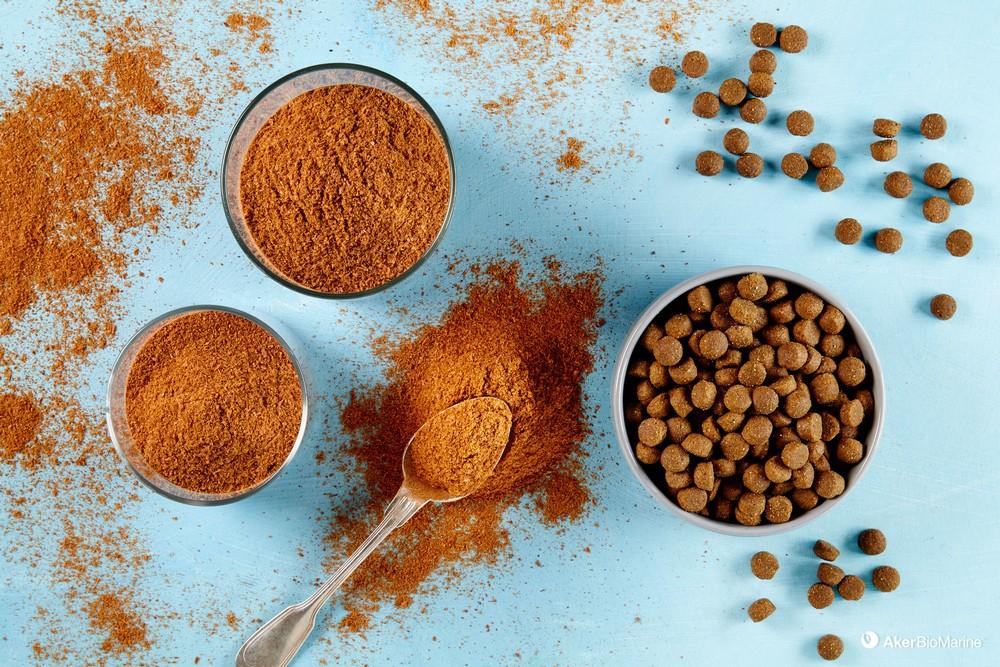 Vitamins
Vitamins
2+ MIN
16/09/2022
Are all omega-3 ingredients in petfood the same?
Omega-3s have many recognised health benefits for dogs and humans alike. Pets are unable to produce sufficient omega-3s naturally in their bodies. However, they are an important nutrient to any diet, benefitting everything from brain development to hearth health. But not all omega-3s are effectively utilized by pets. Therefore, offering the right source is important. The power of marine-sourced omega-3s Studies show that marine-sourced omega-3s remain the most effective source for pets, as pets are unable to convert enough of the plant-sourced version in their bodies. The omega-3s that seem to be most efficient are those bound to phospholipids, such as found in krill. Krill are tiny crustaceans that are present in all oceans, holding a vital position in the marine food chain. Antarctic krill is also a superior source of marine omega-3s, with a distinctive advantage when it comes to the form their omega-3s are made of. This is known as the phospholipid advantage. Recent studies have shown that the phospholipid-bound omega-3s from krill are more effective in raising omega-3 levels in a dog's body compared to triglyceride-bound omega-3s, such as those found in fish oil. Known as the foundation of all cells, omega-3s are more effectively incorporated into tissues cell membranes when bound to phospholipids. And this incorporation is crucial to obtain the health effects of omega-3s. Once in place in the cell membranes, the omega-3s EPA & DHA support the health of several vital organs, including the heart, kidney, liver, joints, brain, eyes, skin and coat. But there is more to krill than this… Krill is also naturally rich in choline, astaxanthin and marine proteins.Choline is a vitamin-like component that plays an important role in liver health and nerve transmission, and thereby also cognitive function and muscle function. Dogs produce some choline naturally, but due to its importance, petfood manufacturers are advised to add this nutrient to the food. However, the choline additive commonly used (choline chloride) is 12 times less bioavailable than the choline found in krill (phosphatidylcholine). The astaxanthin found in krill is a natural antioxidant that protects all body cells from oxidative damage. It has 10 times higher antioxidative capacity than α- and β-carotene and lutein, and more than 100 times higher capacity than vitamin E (α-tocopherols). QRILL Pet, the krill ingredient from the leading biotech company Aker BioMarine is the first krill ingredient for pets certified by the Marine Stewardship Council (MSC) as being sustainable and traceable from sea to product. Besides besides, Aker BioMarine's krill fishery is rated as the world's most sustainable reduction fishery, receiving an 'A' rating from the Sustainable Fisheries Partnership for 7 years in a row. By Tonje Dominguez, Director of QRILL Specialty Animal Nutrition All Pet Food
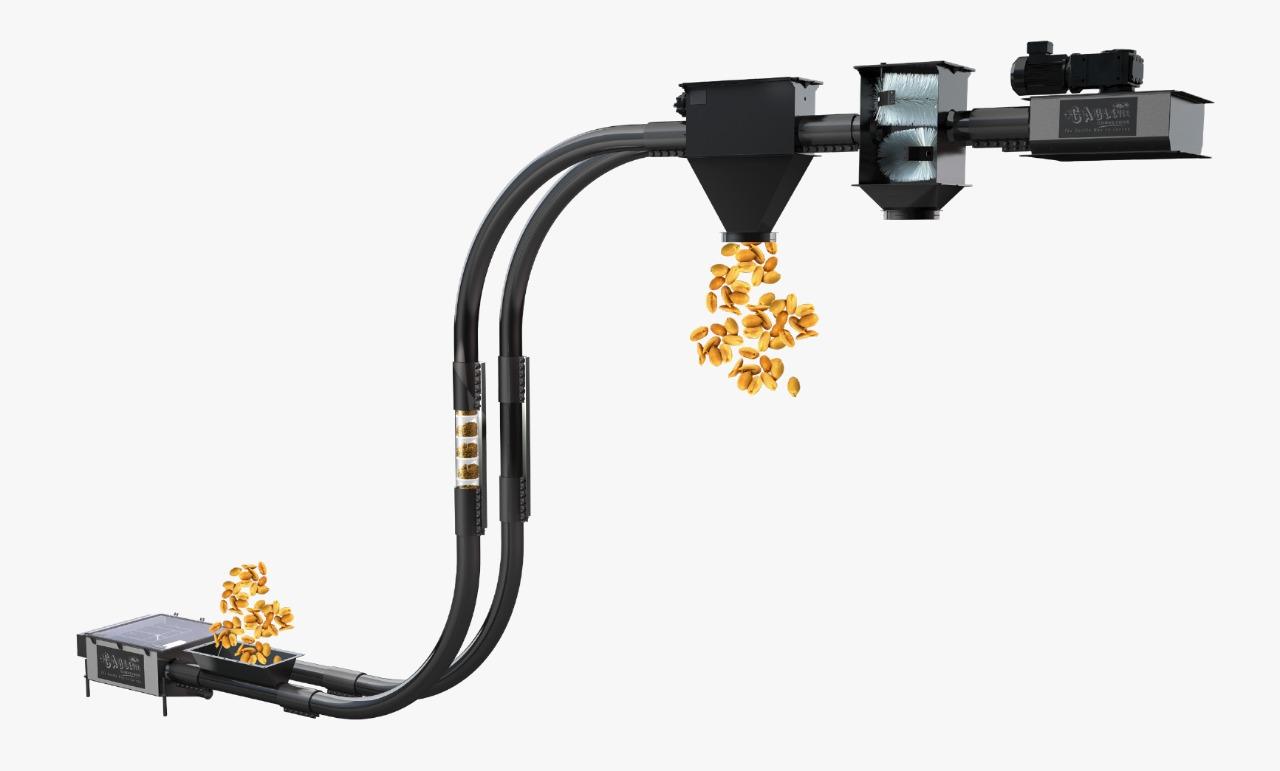 Conveying Systems
Conveying Systems
8+ MIN
15/09/2022
Industrial transport
Before beginning to describe the different types of transports, that exist nowadays in industries, with their advantages and disadvantages, it is important to understand the meaning of transportation: transportation is the means by which objects, products, materials, people or data, are moved from point A to point B. Transport is part of the logistics and material handling of a company, and is carried out in all activities of the value chain, but it does not add value, but rather the opposite: it has associated costs. For this reason, it is very important that the materials transportation is as efficient as possible, with the main objective of optimizing the product value chain. When talking about transport, it is necessary to consider different important points to determine which is the most appropriate system that adapts to the company situation and needs, for example: Product specifications Production line requirements Cleaning, safety and hygiene requirements Lay out and plant spaces Risk of dust explosion With product specifications we refer, first of all to which product is to be moved, the particle size, temperature, humidity and density, whether it is easy or difficult to flow and if it is or not abrasive. Other product characteristics are its angle of repose, rearrangement and inclination. Related to the second point, it is essential to define what is the required capacity, if the transport will be continuous, batch, intermittent and its hours of operation. Additionally, it is important consider the product care, either because it is fragile, has a high degree of explosiveness, it emits gases or because it can be corrosive. After this brief introduction, we will focus on some of the different types of transport that exist today, we will describe their main characteristics, advantages, disadvantages and applications, mainly in Pet Food, Aqua Feed and Animal Feed industry, considering the raw materials and the final product. Tubular Conveyors Tubular conveyors move the products by means of teflon disc that are joined by a taut cable that pulls the movement, the whole set is inside a continuous tube avoiding cross contamination. Main advantages are: it is an extremely clean equipment, easy to maintain, efficient (low energy consumption), it preserves the homogeneity of the product and there is a wide range of capacities and sizes, it is the ideal type of transport when it comes to delicate products that must maintain their structure protecting them, it is a safe system for food. We must highlight the great flexibility to the plant spaces that the tubular conveyor has, allowing to connect a load and a discharge in different industrial buildings, with angles and inclinations that other conveyors do not have the capacity to do. The disadvantages of tubular conveyors are: they are not suitable for abrasive products, their high cost and in special cases, when distances are long, is it necessary to install two or more equipment in series. As mentioned above, these systems have an excellent application for the finished product of Pet Food, Aqua Feed and Animal Feed industries, because it is transported in a delicate way, maintaining the structure of the pellet. It can also be used for the movement of raw materials, as long as they are not abrasive. With the installation of the tubular conveyor, the manufacturer ensures excellent performance and a high-quality final product. Z Conveyors The second equipment to be analyzed is the Z conveyor, it is named for its zeta shape, although also, depending on the layout of the plant, it can be designed in a C shape or with different inclinations for loading, lifting and unloading materials; these systems stand out for being systems with high transport capacities and that achieve very wide routes of long distances. The advantages of these systems are: equipment that adapt to the plant space with vertical and horizontal arrangements, low maintenance cost and avoid cross contamination of products. The disadvantages that these systems have are: the high investment cost, depending on the material of the buckets, the risk of wear when the product is abrasive and, in some cases, the high to medium levels of energy consumption. These equipment are mainly used to transport granular and solid materials, being suitable for the transfer of animal feed. Bucket Elevators Bucket elevators are very high-capacity conveyors, used today in the industry, mainly for lifting and transferring raw materials from one site to another. When it comes to finished product, these equipment are not recommended due to their high degree of breakage. The elevators have, as traction of movement, a band or a chain where the buckets are joined, there the material is loaded and transferred to the corresponding unloading point. Its two main advantages are: its large capacity and its relatively low investment cost (in relation to other conveyors analyzed in this article). As negative points, bucket elevators have: little flexibility, difficult maintenance and do not prevent cross contamination of products or materials. Pneumatic Conveying (dense phase) Another well-known and widely used transport is the dense phase pneumatic, where the force of the air acts for the movement (it is used for flowable products). The transport is divided into two types: Pressurized: used mainly to transport fragile or abrasive materials, at low speeds and long distances. The movement is generated from the 'push' of compressed air that forces the material to move to the destination point. Vacuum: in this second case the distances are short. A vacuum is generated by means of a pump and "sucks" the product to transfer it. The main advantages of these equipment are: tightness, so that no waste of the material or emissions are expelled into the environment, the handling of the product is soft and delicate, so the product is damaged very little and it´s flexibility to the layout of the plant. Among the disadvantages of pneumatic transport, we find that not all products can be transported, there are limitations with the size of the particles, the maximum transport capacity and in some cases the distances, finally, the energy consumption is not less and the wear suffered mainly by the curves of the system. For the transport of raw materials, it is not profitable due to the cost of the equipment, while for the final product it is usually used by companies, despite the small damage that the croquettes suffer. Pneumatic Conveying (diluted phase) Continuing with pneumatic transports, we have the diluted phase transport. It is a more direct method and the materials move dissolved along with the air flow. Like the previous case, these systems are also divided in two types: Pressurized: a high volume of compressed air is supplied at low pressure to generate the movement of the products. It is commonly used to get the product from a one point to multiple destinations. Vacuum: it works in the opposite way; with a pump the vacuum is generated to carry out the product. A great advantage that the transport has is that important distances are achieved with wide flexibility, high transport capacity and its investment cost is accessible, while its negative aspects are its large consumption of electricity and there is a risk of cross contamination of products or raw materials. They are used for bulk raw materials where the breakage is not relevant. This break occurs because the materials are suspended in the air and in contact with the pipe, generating friction that affects its homogeneity. Therefore, when we refer to the transport of animal feed kibbles, it is not a recommended system. Screw Transport The next transport to analyze is the screw transport, it is one of the simplest that exist today in industries due to its easy manufacturing process and its accessible price. The screws are fed through one or more mouths and the material is moved to the discharge (s) by means of the screw. The screws are very useful for the discharge of silos in the dosage on scales, where the variable flight is usually used to avoid the compaction of the product. However, when we talk about the transport of animal feed kibbles, the screws are not recommended because it can damage them, generating breakage of kibbles and dust, for this reason the screws are not recommended for the final product. However, they are considered for the move of raw materials, although the short distance from one point to another is considered as a limitation. The advantages that can be mentioned of these systems are: their low investment cost and simple installation. While the disadvantages that stand out is its null flexibility for being a robust system, as mentioned above the high probability of breaking the transported material, in many cases its difficult maintenance and its low capacity. Belt Conveyors Belts Conveyor are the most common types, as is screw transport. The movement occurs on the belt, which moves thanks to the rotation of the rollers where it rests. Although the operation seems to be simple, today there are great innovative technological developments. The positive aspects of these equipment are: versatility and adaptability to a wide range of products with great transport capacity, according to the technological level it is considered as a low-cost equipment, significant distances traveled are achieved and it has a low consumption of electrical energy. Furthermore, by including "floating" sections on load cells and belt speed control, it is possible to measure and gravimetrically control the flow of product to be transported. As all the equipment mentioned above, this one also has disadvantages, for example damage to the rollers and belt, possible slippage, misalignment and it is not a very flexible system. Currently several industries use these systems for transportation, however, it is necessary to consider when raw materials are transported because the air can be polluted and when finished products are transported there can be cross contamination. Chain Conveyors Another interesting transport to consider when planning an investment project is the 'redler' or chain conveyor, the traction is from the chain that moves the modules for the move of materials. The most notable advantage is its high transport capacity and the distances that can be achieved. While among its disadvantages are the frequent replacement of the sprockets due to their high wear, their high energy consumption, their almost zero flexibility and only slight inclinations can be applied. Its use for the transfer of animal feed pellets is questioned because product can accumulate between the chains, which would generate a source of bacteriological formation, in addition to the high probability of breakage of the pellets. Not everything is negative in these transports, because when raw materials must be moved, it is one of the most recommended and used systems for industries having an accessible price. We will make a conclusion with ponderation of each of the analyzed transports considering the points seen and the following assessment: We can conclude that, after analyzing each of the main aspects and characteristics of the different conveyors with their advantages, disadvantages and applications in the animal feed industry, among the most suitable and recommended systems are the Tubular and Z Conveyors. Despite the differences, they all have a good score, so it is key to understand the purpose of their installation, each of the points studied must be considered, its necessary to evaluate the cost / benefit ratio and determine which system is indicated for the existing necessity. At Clivio Solutions we are at your entire disposal to evaluate and recommend the appropriate type of transport for each of your needs, it will be a pleasure to help you. We await your inquiries by email or by WhatsApp at +54 -9-2352-540040. Source: Clivio Solutions
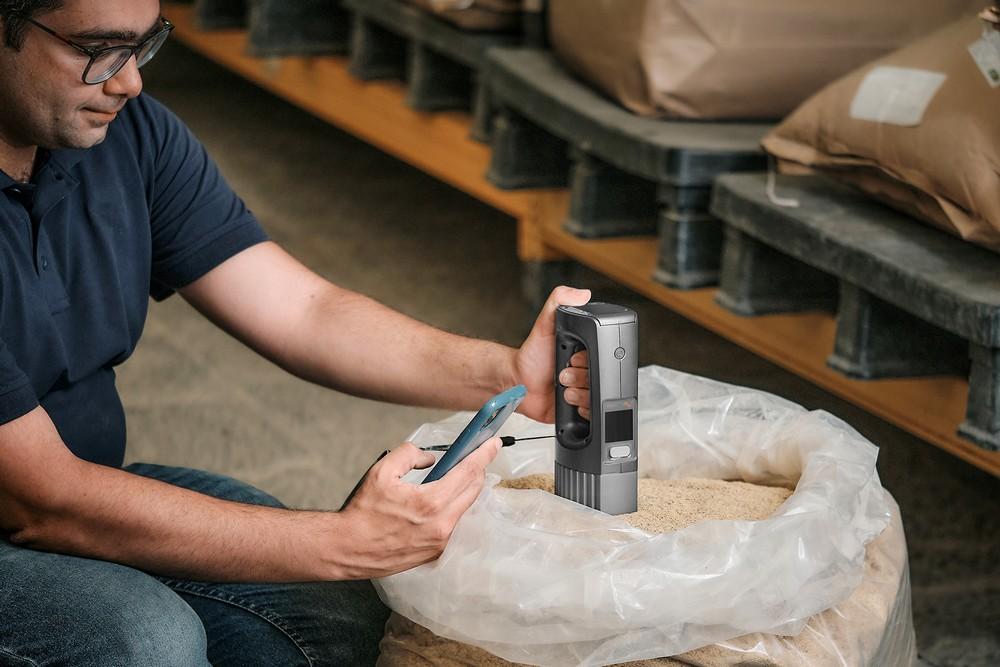 Laboratory
Laboratory
4+ MIN
14/09/2022
Instant Insights into Pet Food and Ingredients with Portable On-Site Analyzers
Pet Food production shares many of the raw materials with the much larger feed markets and as such has been subject to the same fluctuations in cost and supply due to unstable global markets for core ingredients and geopolitical crises. The last two years have seen production and supply chain issues due to COVID-19, and the 2022 Russian aggression in Ukraine has further affected the global commodity market with record prices in 2022 for many pet food ingredients. Additionally, the pet food market has its own dynamic forces such as changing consumer trends in formulations and added value ingredients such as exotic protein sources or new healthful ingredients. A quick look at available pet foods will find products for all life stages, grain-free or novel protein formulas such as salmon or duck, and many other options. Like other feed producers, pet food manufacturers are challenged to create recipes for a multitude of aquaculture feeds utilizing many different ingredients, often sourced globally, to balance the palatability and proper nutritional profile at the lowest price point. Formulating feed recipes on a least-cost basis is not a simple task. On the quality side of the equation, pet food ingredients are natural products with inherent variability in composition based on growing environments, variety, processing, and storage conditions. Wheat bran can vary from 14-17% protein, as an example, while fish meals can range from 60-75% protein depending on type and season. The combination of variable raw material costs and quality with the requirement to produce many defined recipes with specific nutritional profiles places unique challenges on pet food producers. The pet food industry was one of the early adopters of NIR technology, and most pet food manufacturers are already familiar with the benefits of using NIR instrumentation technology to test ingredients for nutritional composition. This technology is commonly used in laboratories via benchtop instruments, but these instruments tend to be expensive and require skilled operators. In terms of cost, NIR analysis is less expensive and faster than wet chemistry methods in general, with similar or better precision. For example, the cost of routine proximate analysis is only about one-third of the cost of wet chemistry, and the analysis is typically completed in less than a minute. The benefits of frequent analysis can be seen throughout the pet food value chain. Incoming raw ingredients can be monitored to ensure they meet contract claims, providing evidence for claims where the quality is below specification and valuable data to take advantage of when quality is higher. Pet food producers can use this information to adjust formulations based on commodity or ingredient prices and still maintain proper nutritional specifications for the various final pet food recipes. Final compound pet food can be monitored at production to ensure labeled specifications and closely monitor moisture content to adjust the drying ovens. Moisture is a critical component for pet food as high moisture product leads to spoilage and short shelf-life issues, while low moistures affect palatability and increase raw material costs. For most manufacturing plants, the savings from precise control of moisture can pay for a NIR program in weeks or months with a large ROI. However, the actual value of frequent NIR testing can only be realized by easy, on-site testing throughout the product chain. As technology has advanced, NIR has left the confines of the laboratory and become portable and accessible to pet food manufacturers in many locations in their facilities. NIR is about putting more information into the hands of the plant managers so that they can have complete insight into all stages of their process With the cost of bench-top instrumentation ranging from 40 to 100K dollars and a concurrent requirement for a clean and stable environment and well-trained operators, many pet food manufacturers are looking for reliable instrumentation that is portable, rugged, and able to accurately analyze proximate parameters. An additional requirement for the next-generation solutions is that they must also be implementable at every point in the manufacturing process (raw material through final product) with an ease of use and cost that positively affects the efficiency and consistency of production. Portable NIR devices have been on the market for some time, but many have not delivered the performance, reliability, and ease of use required for intuitive on-site analysis. With the earliest examples of handheld NIR technology, the biggest issue was the poor transferability of calibrations from robust benchtop instruments to the portable platform. With next-generation spectrometers, such as those implementing MEMS technology, it is possible to eliminate these issues and transfer calibrations reliably. FT-based MEMs spectrometers also deliver accuracy and performance comparable to much more expensive benchtop units, even when faced with challenging conditions. One recent study examined the performance of a portable MEMS-based NIR analyzer from NeoSpectra by Si-Ware with an industry-standard benchtop FT-NIR analyzer for soymeal analysis. Figure 1 shows that the portable handheld NeoSpectra scanner performs as well as a benchtop instrument for protein, oil, fiber, and moisture analysis. Figure 1. Calibration statistics from a soymeal calibration created on a current benchtop FT-NIR and a NeoSpectra by Si-Ware Scanner analyzer. Reprinted with permission from Klevtech Consulting. As the data above show, new portable FT-NIR analyzers can provide the insight required by pet food manufacturers to standardize consistent feed quality while minimizing raw material costs in an end-to-end quality program from ingredients to the pet food mill. Cloud-based intuitive mobile apps bring smartphone ease of use to the operator, and cloud-based software aggregates and summarizes reported data for powerful insights into the operation. The next-generation portable NIR instruments are ushering in a new era of pet food analysis with affordable on-site analysis in easy-to-use handheld devices. by NeoSpectra by Si-Ware All Pet Food
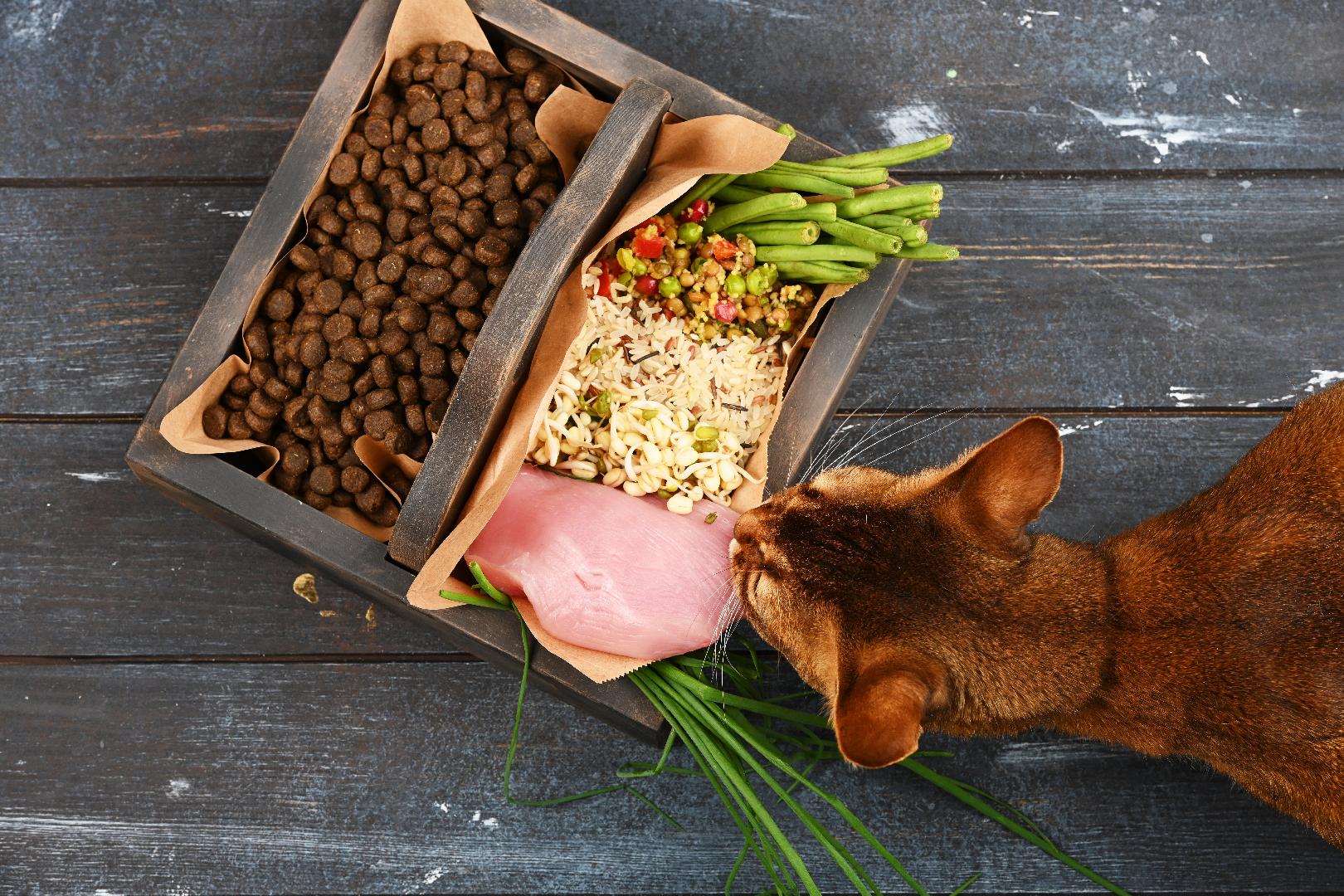 Ingredients
Ingredients
4+ MIN
13/09/2022
Por Armando Enriquez de la Fuente Blanquet
What is the most important ingredient in Pet Food?
From the point of view of a pet food manufacturer, the answer would again be everyone. But I want to invite you to reflect for a moment on all the ingredients that make up a balanced meal. It is critical that pet food producers and pet owners maintain confidence in the quality and food safety of all ingredients, as well as traditional and innovative, used in pet food, treats, and snacks. Let's take the pet owner's ingredient of choice: protein. In fact, protein is a nutrient whose source (which can be of animal or vegetable origin) is responsible for providing the protein in the food formula, so it must comply with quality, correct composition, food safety, and physical characteristics, among others. We can continue going through every one of the ingredients we use in the food formulas but I would like to dwell on an ingredient of the balanced food formula that is made up of multiple elements inside: the vitamin premix (13 vitamins) and trace minerals (6 minerals). This ingredient is a homogeneous mixture of one or more micro-ingredients, designed to allow uniform dispersion of multiple nutrients within a pet food that must be present at milligram or microgram levels. Although premix is typically used at low inclusion levels, its role in the feed requires us to pay close attention to this ingredient, as 1 ton of "unsafe" premix could cause illness in many pets and may require tons of pet food to be eliminated from stores and pet houses (figure 1). Recalls cause distress to pet owners, have an adverse economic effect on pet food manufacturers, and result in a loss of confidence in the pet food supply chain as a whole. Figure 1. The example given is based on 1 tonne of premix used in a 5kg inclusion per tonne of dog food. The dog food is packaged in 10kg bags and sold to 20,000 owners, each with 1 dog. It is essential to use a safe premix, which guarantees risk control at all stages of the food chain, from the selection and approval of ingredients to the packaging of the finished product. Control loss at any of these steps could result in the supply of "unsafe" premixes. A safe premix starts with design, the core step in achieving a mix with a homogeneous and uniform dispersion of each ingredient to ensure that the pet food provides a good level of nutrition. The design of a premix considers certain ingredient characteristics and interactions that influence nutrient segregation, stability, and biological response (Figure 2). Figure 2. Interactions between ingredients' characteristics. A premix is made up of different microingredients with different physical and chemical characteristics that will determine the good performance of the premix in the final feed. Here, the complexity and the importance of knowing each component begins. Within the physical characteristics, there is particle size. Smaller particle size is beneficial if the active ingredient has a low inclusion level per tonne of feed. As the particle size decreases, the number of particles increases, thus improving dispersion. We would then think of looking to work with ingredients with small particles, but as the particle size decreases, the electrostatic charge also increases. A high electrostatic charge causes particles to be attracted to metal surfaces, such as mixing and conveying equipment. In addition to particle size, there is the particle's shape, which affects the density of an ingredient and, consequently, that of the premix. And density influences the packaging and flow characteristics of the premix. Achieving good flowability is important to ensure that materials are accurately weighed, added, and dispersed within the premix. Finally, the smaller particles have the capacity to absorb more moisture; they are more hygroscopic because they have a larger contact area, and there is more interaction between the particles. Hygroscopic ingredients can cause the premix to cake up or change color, indicating that a chemical reaction has occurred. After the design, the manufacturing process must be accurate and consistent to meet legal, quality, and safety requirements for the premix. Its manufacturer must subject all ingredients to a risk assessment process that identifies food safety and quality hazards associated with the ingredients, including the source, manufacturing process, and supply chain. The mixing equipment must be in optimal conditions and within a maintenance and cleaning program to ensure the mixing of the components and preserve the integrity, quality, stability, and nutritional value of each microingredient. Finally, before shipping a premix, it must be checked and ensured that the quality of the product meets legal requirements and customer specifications and that all critical control points and operating procedures are completed. To sum up, we can affirm that all the ingredients that make up a balanced pet food are important and must be subject to strict quality control and assurance. There is a very particular ingredient, the premix of vitamins and trace minerals, which is responsible for providing many nutrients to the final diet. These nutrients go in very small quantities in the feed, in the order of ppm, so having a safe premix is essential. Safe premix is a great responsibility and must have all the control processes in the ingredients and in the manufacturing process. Fuente: Armando Enriquez de la Fuente
 Market Information
Market Information
3+ MIN
12/09/2022
SAVE THE DATE: Think Plastic Brazil holds 2nd World Plastic Connection Summit on November 7-10, 2022
Think Plastic Brazil (portfolio of solutions to support the converted plastic products industry in the internationalization process for target markets), created by the INP (National Plastics Institute) in partnership with ApexBrasil (Brazilian Trade and Investment Promotion Agency), has confirmed the date and venue for the 2nd World Plastic Connection Summit, the most important international event in the Brazilian converted plastics sector for business and knowledge renewal. The Summit will be held in a hybrid format (face to face and online) at the Blue Tree Premium Alphaville, on November 7-10, with simultaneous transmission in Portuguese, Spanish, and English. In the 2021 edition, the event recorded over 13,000 hits from 54 countries, with 130 participating Brazilian companies and globally renowned speakers, such as Alexandre Herchcovitch, Paulo de Mattos Coelho (Braskem), Karim Rashid, Sally Dominguez, Rosana Orlandi (Guiltless Plastic), Peter Gianetti (IHA), and Priya Nagrale (Market Study Research). The main innovations this year are the new award category (World Plastic Global Design Award) and the implementation of a Buyer and Image Project with large global buying networks. 'In addition to the actions designed to promote business and the renewal of knowledge, the Summit will be a moment of interaction between the main exporters of the Brazilian converted plastics sector, allowing the exchange of experiences and the growth of the market as a whole. The presence of major domestic and international names at the Seminar, the recognition of the internationalization efforts in the Award, the possibility of good deals with the Buyer e Image Projects, and the expected launches of the Yearbook 2022 and Color Trend 2022 confirm the greatness of both Think Plastic Brazil and of our industries,' said Carlos Moreira, Strategy and Project Planning Manager at Think Plastic Brazil. The World Plastic Connection Summit 2022 will be composed of: International Seminar: an international technical seminar to disseminate relevant information for decision making both on target markets and on the potential of the Brazilian converted plastics sector, with the participation of renowned professionals from different countries. The Seminar will be held on November 7-8 and will be covering the launch of the International Color Trends Guide (Color Trend 2023) and the International Yearbook 2022 with international data on the sector and information from the 130 members of Think Plastic Brazil (Yearbook 2022). International Award: the award ceremony, which aims to acknowledge the companies that are investing in the Internationalization process while honoring the relevant actions by companies associated with the Program. Color Trend – International Color Trend 2023: an in-depth global study of color trends in the converted plastic market, imprinting Brazilian culture and presenting production and development possibilities to domestic companies. The color survey will be coordinated by a renowned Brazilian designer, bringing even more relevance to the information collected. International Yearbook: the Yearbook, printed in three languages (Portuguese, English, and Spanish), presenting the international information on the sector for 2022 and the complete data of the Brazilian companies participating in the portfolio. Buyers and Press project International Show – Buyers Project and Image Project: on November 9-10, at the Blue Tree Premium Alphaville Hotel, companies associated with the Think Plastic Brazil Program welcome international buyers and journalists. The World Plastic Connection Summit is one of the main actions of the sectoral project for the verticals supported by the Think Plastic Brazil program: Agribusiness, Toys and Childcare, Construction, Packaging, Inputs (including Masterbatch, the material responsible for the coloring of converted plastic products ), and Housewares Press Contact: Gabriel Rajão & Suzana Elias Azar Phone Number: +55 11 99629-0173 ByThink Plastic Brazil
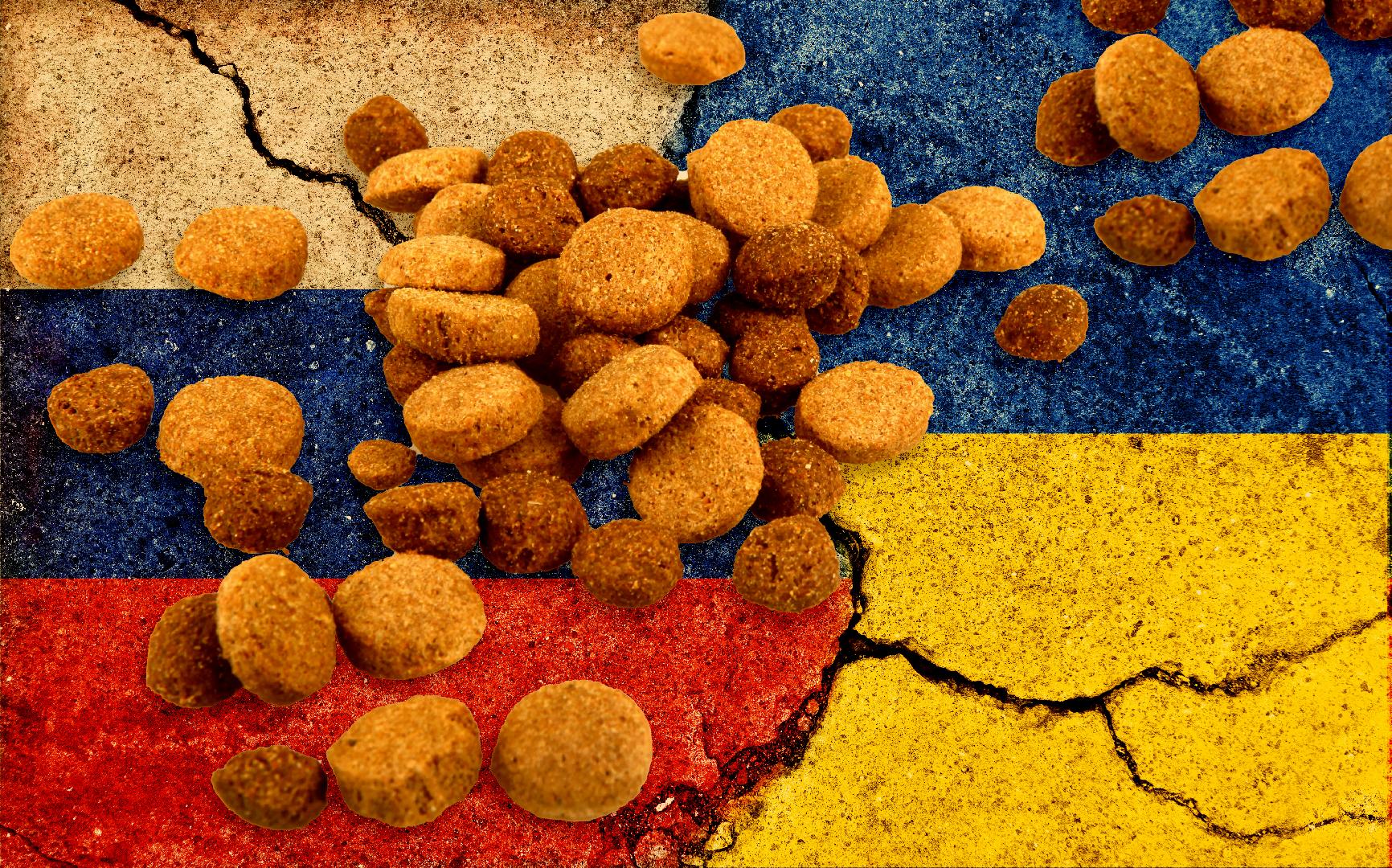 Market Information
Market Information
4+ MIN
08/09/2022
Por Luciana Chippano
The impact of the Russia-Ukraine war on the Pet Food Industry
War in Ukraine threatens world food supply Russia is one of the world's largest wheat exporters; Ukraine follows in its footsteps. Both countries, from 2021-to 2022, were expected to account for almost 30% of global wheat exports, according to data from the US Department of Agriculture, a number that is affected by unexpected events. The Russian tanks and missiles that besieged Ukraine have since threatened the food supply and livelihoods of scores of people in Europe, Africa, and Asia who depend on the farmland of the Black Sea region, known as the "breadbasket" of the world." As in war zones, Ukrainian farmers had to abandon their fields as millions fled, fought, or tried to stay alive. And just as the ports that ship wheat and other staples around the world are being closed in Ukraine, in Russia there is a huge concern that its grain exports will be increasingly affected by Western sanctions. A long conflict would undoubtedly have a major impact There is a reality: wars mean scarcity, and that means price increases. If the Ukrainian citizens have been called to defend their country, who does the harvesting? Who takes care of the transportation? If we consider that during the first two days of the conflict, the price of cereals for animal feed increased by 10% on the open market in Spain, what can we estimate for what's left of 2022 if shortages and supply problems continue to increase? How can we expect, then, that the raw materials industry does not affect the pet food industry, which has a constant interrelation? Pet Food companies respond to the Russian invasion The Russian invasion of Ukraine has prompted scores of pet food and treat manufacturing companies to refocus their operations in their respective regions. Regarding the conflict specifically, several companies have decided to either stop their operations or advertisements in Russia as a sanction to the country or to make money and food donations for people and pets seeking refuge in other European countries as well as in Ukraine to resist Russian forces. Ukraine and Russia are major food producers. Both countries combine almost a third of world exports of wheat and barley. Ukraine is also a major corn supplier and a world leader in sunflower oil, widely used in food processing. And is, in fact, the fourth largest external food supplier in the entire EU. Russia, for its part, is the world's leading exporter of nitrogenous fertilizers and the second leading supplier of potassium and phosphorous fertilizers. Logically, the global pet food industry may impact some of the main commodities that Ukraine produces; any disruption to its supply could have ripple effects throughout the global ingredients market. This is insignificant in comparison with the loss of lives and livelihoods in Ukraine, but pet food manufacturers around the world must contend with ever-increasing disruptions to already tangled enough supply chains. As a result of the conflict, we can name the ships that cannot leave the Black Sea ports, and therefore all exports are stopped. Furthermore, international sanctions on many Russian companies are already having an impact. In this sense, there is no doubt that pet food companies are already (and must continue) actively searching not only for alternative suppliers for raw materials that they do not obtain as before but also for substitutes. Operations cannot be stopped but rather modified, so that, in the event of a total lack of supply, the different food formulas should be changed with the main objective of keeping on supplying the pet food industry and pet owners who are in constant demand for food. However, although pet food manufacturers use different raw materials and supply chains, the repercussions for the pet food industry are inevitable. The limited availability of some essential raw materials, such as sunflower oil or white fish, packaging raw materials and cereals, as well as the interruption of logistics and fertilizer and fuel reservation are just some of the factors of the problem. Summary We should also consider that the impact of Russia's actions against Ukraine goes far beyond the grain and energy markets: there is the potential (which is already happening in many parts of Europe) to increase global inflation, yet increased as a result of COVID-19. And although Russia and Ukraine are not economic giants like the United States and China, they are important suppliers of certain diary products. And while the pet food industry has already successfully overcome the challenges of the pandemic by adapting supply chains and sourcing alternative raw materials, we are once again facing an uncertain present and future. Any change in raw materials can affect supply chains and availability.
 Interviews
Interviews
5+ MIN
07/09/2022
Interview with Emily Tarbagayre, General Manager of Symrise Pet Food Argentina
Dear Emilie, for us it´s a great honor you have granted us this interview, so could you give us a brief personal introduction?
I was born and lived in France until 2006, at which time I came to Brazil in search of international experience. Regarding my studies, I'm an Agricultural Engineer specialized in food and I am currently studying an Executive MBA at Insper in São Paulo.
The same year that I arrived to Brazil, I began my career within Symrise Pet Food as head of Quality & Environment for that country; In 2008 I assumed the responsibility of directing the Development and Technical Support department (DST) for Latin America, being involved, among other things, in developing specific solutions for our clients and technically assisting them in the search for more palatable and specific diets.
And now you have become the new general manager of Symrise Pet Food Argentina; Why that change? What are the challenges you will have in this new position?
This change is framed in a significant structuring of the company; After several years of evolution and reorganization within the Symrise Group by (among others) the Diana group, at the beginning of March we announced worldwide the birth of Symrise Pet Food, a company with the experience and dimensions necessary to take on the challenges of the pet food industry of tomorrow. Thanks to the acquisition of companies such as ADF, Schaffelaarbos, or the recent Wing Pet Food in China, Symrise Pet Food required many people to take on new roles to answer these challenges. Without going any further we have Diego Maurizio, our former regional director as global director of the palatability business... a completely new and necessary position for these times.
Regarding my new position I can tell you that I´m very excited because despite the current economic situation in Argentina, the pet food market continues to be very promising. Thanks to being the country with the highest rate of pet ownership in households (in 2021 and according to Euromonitor, 7 out of 10 households had at least one dog), the Argentine market is the third Latin American market according to sales volumes. Personally I think there is a lot to develop and fortunately the manufacturers know this and are working on it.
My time in the regional management of DST allowed me to work closely with clients managing their daily challenges: new needs, increasingly complex raw material supply scenarios, an industrial production context with new technologies, processes and rapid expansion, among others. Having been in close contact with our clients for more than 10 years was one of the reasons why they entrusted me with this new position and which I hope to be able to develop to meet everyone's expectations.
Based on Symrise Pet Food's global experience, could you tell us about your solutions and services to improve pet welfare and owner satisfaction?
Symrise Pet Food acts in the market with the offer of 3 groups of solutions that address essential aspects of pet food: palatability, nutrition and food protection.
SPF, our brand of liquid and powder palatants, has been present in the world market for more than 40 years, turning feeding moments into moments of shared happiness. Nutrios, for its part, seeks to provide, through natural ingredients, animal nutrition in accordance with the current high demands of pet parents. Finally, Videka, a joint venture with Kalsec, is responsible for creating the next generation of natural antioxidants for the entire range of pet food and snacks.
Symrise Pet Food also owns Panelis, the leading expert measurement center providing reliable and innovative data on the eating behaviors and sensory preferences of dogs and cats, while setting the highest standards in terms of animal welfare. Thanks to this broad portfolio we can fully serve all producers who want to go one step further and develop the pet food of the future.
Taking into account the importance that pets have acquired within the family, and the demands of their parents when it comes to feeding them, how do you think the Pet Food market will look like in a few years?
In recent years the pet food market has grown faster than other industries; And not to mention during the pandemic where certain consumption behaviors by pet parents are here to stay. Double income and no kids (DINK), Social Networks and urbanization are three sociocultural factors that, in my opinion, orchestrate our industry and take it to a point of maturity that has only been seen (partially) in more developed markets.
I believe that in a few years we'll have a much more robust, premiumized Latin American market, and, above all, much more committed to the environment and the new "green" standards of living. Failure to address this will be decisive when declaring the success or not of a product.
As Symrise is a company committed to the environment, could you tell us how you respond to these challenges of generating more sustainable processes?
Sustainability has been present in the DNA of Symrise Pet Food since its origins, valuing side-streams and turning them into products of the highest quality at a global level. Likewise, we developed an agenda that closely follows the sustainable objectives set by the UN and thanks to which we work to reduce our carbon footprint, water consumption, supply of raw materials, innovation, building and process improvements, year after year, as well as caring for both employees and local communities (among others).
Regarding the innovation mentioned above, I can tell you that when formulating a new product we use our tool called the Eco-Design Matrix. With it we can measure 7 environmental impacts that occur in the production process. Did you know that pet food supplies generate about 80% of its environmental impacts? Thanks to the Eco-Design Matrix we can evaluate different alternatives to reach the same result with a significant decrease in environmental impacts and deliver to our client a product fully aligned with their sustainability strategies. In this way we are contributing in a pragmatic way to the reduction of the environmental footprint of our clients and the achievement of their sustainability goals.
I would also like to tell you that in 2019 Symrise Pet Food decided, together with the beginning of the construction of its plant in Colombia, that all new plants will have LEED certification (certification for sustainable buildings, developed by The U.S. Green Building Council (USGBC) . For this very reason, the plants we are building in Brazil and Mexico will be part of the select group of LEED-certified green buildings that are the future of the industry.
Is there anything else you want to add?
I would like to take advantage of this moment to invite all readers to visit us at our CIPAL booth; as well as the manufacturers who want to know more about our palatability solutions, and ofcourse suppliers who want to introduce us to new businesses to continue developing the pet food industry. The Symrise Pet Food team and I are very excited to be back at face-to-face events and meeting all of our customers. We are waiting for you!
by All Pet Food
 Market Information
Market Information
6+ MIN
06/09/2022
Por José Fernando Raizer
Open letter to a Factory Manager
The functions of the factory manager are carried out right at the point where the company's plans translate into action. The failure or success of these plans depends on the energy and skill with which human, financial, raw material and equipment resources are applied to developing the products and services provided by the company. As the economy grows, the need for these resources to be well-used increases even more.I n general, business management is currently facing situations of profit margin compression, which requires strict compliance with the budget, which must be constantly reconciled with cost reduction. New manufacturing processes require more complicated equipment and tighter controls on quality. The community, the Ministry of Agriculture, and other regulatory bodies at every level expect the factory to reduce pollution, dust emissions, and noise and maintain the quality of its effluents at increasingly demanding levels. Good manufacturing practices went from 'desirable' to 'mandatory' status… In addition, the procedures, reports, audits, and controls seem to multiply at a very fast pace.The purpose of this article is to help the factory manager list and prioritize this set of responsibilities and duties so that it is easy to understand the relationship between them and to specify the managerial tools that he will need to handle all of this. We also need to address the basic responsibilities of the factory manager and his relationship with other departments in the company. PRODUCTION FUNCTION Production work can be simply defined as 'making products of assured quality, in the required time, at the lowest possible cost, safely and with good employee relations.' The factory manager has to transmit the knowledge and information acquired in his operation to the competent areas, which can help in new products and processes development, in addition to protecting the company against the obsolescence of equipment and methods. The factory manager also has to be cautious and efficient in applying the resources entrusted to him, and to use money wisely by recommending the purchase of equipment labor-saving, reliable, inexpensive and infrequently maintained. And that, in addition, offers flexibility for future expansion. Maintaining a good relationship with employees is no longer considered a simple 'collateral' or secondary activity of the manager. It must include, in addition to the employees, a good relationship with the entire community where the factory is located, including neighbors, civil authorities, the professional and business community, minority groups, as well as those related to the environment... The factory manager is expected to deliver results in six basic areas: Production, Quality, Costs, Safety, Maintenance, and Relationship with employees. Another responsibility of the factory manager is to accurately determine the plant production capacity. This is essential for the company to make the right decisions regarding its market strategy. When doing this, you must take into account the time losses that naturally occur during the process, preventive maintenance times, cleaning, etc. QUALITY The factory manager is responsible for establishing a program that involves and commits all production personnel to follow the standards of the process without "shortcuts" or personal deviations... Instilling respect for total quality puts great pressure on the factory manager's leadership skills and is a full-time task... COSTS Producing at the lowest possible cost is the most obvious element of the factory manager's responsibility. Another responsibility is to generate or actively participate in the annual budget preparation for all areas of the factory, from the reception of raw materials, production and all its processes, maintenance, and even shipping, and then keep track of these expenses within those established limits, throughout the year. The factory manager will only be successful in this task if he creates a strong sense of cost and value consciousness in his team. Finally, the factory manager needs to participate in the company's capital investment program development. He needs to recommend new factories or equipment to expand production, reduce costs, increase quality and improve services, meet the requirements of government regulatory agencies, and even propose outdated equipment replacement. SAFETY AT WORK From a humane standpoint, the factory manager must do whatever is necessary to prevent physical harm or death to his employees. However, the simple 'humanitarian feeling' is not enough. There must be adequate training programs, equipment that minimizes risks, personal protective equipment, etc. All this must be part of an annual investment program duly presented and approved by the company's Board of Directors. The so-called 'housekeeping' is also the responsibility of the factory manager. It is impossible to maintain quality and safety in environments full of dust leaks, spills, and piles of garbage and unusable material in the corners… Workforce morale and efficiency are bad when the factory is not permanently cleaned. Giving that "general treatment" to the factory sporadically is not "good practice"... It seems obvious to say this, but frequently, there are cases in which factories work at the absolute limit of their capacity without proper maintenance, and therefore, the obsolescence process accelerates terribly. It is good to remember that the decision to work without performing adequate preventive maintenance is made by the company's Board of Directors, and should not be made by the factory manager. It is up to him to communicate adequately and with the necessary frequency to the Board that the process of working in an 'overcapacity' regime can generate a great cost in the future. EMPLOYEE RELATIONS It's not the factory manager's job to keep everyone happy; that's impossible, but it's your job to put employee relations on a foundation consistent with company goals. There are at least 4 result areas (three of them measurable) through which we can judge the performance of the factory manager in the item "Relationships with employees": The factory operation is not interrupted by events derived from bad relations with the employees. The atmosphere in the factory is not one of abandonment but of a collective sense of purpose. This is subjective but easily noticeable to those who know a little about the factory. When the company/employee relationship is compromised by conflicts such as strikes, the voice of the factory manager is respectfully heard and taken into account. Companies with good relationships with their employees tend to have a low rate of absences, delays, and employee turnover. THE SCIENCE OF MANAGEMENT After reading this list of responsibilities and knowing there are still many more, the factory manager can easily deduce that: "Managing is doing things through people...", and making high use of morality and commitment to the right thing. Planning, organization, and control are the essential activities for this. The factory manager sets the 'tone' of the work environment by showing how much energy he puts into his own work, how determined he is to achieve his goals, and by demonstrating his ability to plan, organize, and control events. If the manager demands high performance from his subordinates, he has to set even higher performance standards... The phrase 'Do what I say, not what I do' is not the motto of a successful manager!!! Demands the same professionalism from those who report. A maintenance supervisor who is not able to explain why he spends so much on a certain area or piece of equipment does not deserve this position. Surround yourself with competent people because, in the end, your team is what determines who you are. Do not work firefighting on a break/fix/fire/hire basis. Although not required, make an annual, detailed budget monthly, from maintenance to general factory expenses. Have an ally in the nutrition/formulation area. It will need your formal endorsement to justify a thermal process improvement, a new type of extruder die, and a new and more efficient type of coated hammer for grinding that contributes to proper DGM (Medium Geometric Diameter), a liquid adder, etc. Take advantage of the best of others: you are not an expert in everything. In the training program for your employees, ask the formulator for help in talks for operators. Salary is not the only motivating factor for an employee; attention is essential, and nothing better than a well-functioning training program to show that you value your team. Invite suppliers' personnel, and use consultants available from suppliers of premixes, amino acids, vaccines, and acidifiers…. If you do not already know, learn immediately how to do ROI calculation, PERT network, and problem analysis. Stay up to date on courses, congresses, and everything that can contribute to your development and that of your team. And above all, replicate what you are learning with your team. For anything that costs money, submit a spreadsheet with the expected benefit and your commitment that it will happen. In the absence of high rates of return on investment, justify what the factory needs based on the argument of QUALITY / SAFETY ASSURANCE, and do it in a formal way, with at least a well-done SENSITIVE ANALYSIS. SUCCESS!!! By: Fernando Raizer
 Dogs
Dogs
2+ MIN
05/09/2022
New links found between dogs' smell and vision
Cornell University researchers have provided the first documentation that dogs' sense of smell is integrated with their vision and other unique parts of the brain, shedding new light on how dogs experience and navigate the world.
"We've never seen this connection between the nose and the occipital lobe, functionally the visual cortex in dogs, in any species," said Pip Johnson, assistant professor of clinical sciences and senior author of "Extensive Connections of the Canine Olfactory Pathway Revealed by Tractography and Dissection."
"When we walk into a room, we primarily use our vision to work out where the door is, who's in the room, where the table is," she said. "Whereas in dogs, this study shows that olfaction is really integrated with vision in terms of how they learn about their environment and orient themselves in it."
Johnson and her team found connections where the brain processes memory and emotion, which are similar to those in humans, as well as never-documented connections to the spinal cord and the occipital lobe that are not found in humans.
The research corroborates her clinical experiences with blind dogs, who function remarkably well. "They can still play fetch and navigate their surroundings much better than humans with the same condition," Johnson said. "Knowing there's that information freeway going between those two areas could be hugely comforting to owners of dogs with incurable eye diseases."
Identifying new connections in the brain also opens up new lines of questioning. "To see this variation in the brain allows us to see what's possible in the mammalian brain and to wonder -- maybe we have a vestigial connection between those two areas from when we were more ape-like and scent-oriented, or maybe other species have significant variations that we haven't explored," Johnson said.
Source: Cornell University
 Micro Ingredients
Micro Ingredients
3+ MIN
01/09/2022
PLASMA SPRAY DRYING FOR DOGS AND CATS
Plasma can effectively realize the coarse texture by the time that maintains the cohesion of the different diet ingredients. From the plasma spray drying process, a very fine powder is obtained that retains all the functional properties of the liquid product, such as the ability to produce a thermoplastic gel when diluted in water and subjected to high temperature or extreme pH, or its high retention of water and emulsification capacity, to name a few. Due to these technological properties, plasma is used in products in chunks and treats as well as in cat food. The use of plasma not only contributes effectively to improving the piece texture but also maintaining all the different recipe ingredients.Plasma can effectively realize the coarse texture by the time that maintains the cohesion of the different diet ingredients. From the plasma spray drying process, a very fine powder is obtained that retains all the functional properties of the liquid product, such as the ability to produce a thermoplastic gel when diluted in water and subjected to high temperature or extreme pH, or its high retention of water and emulsification capacity, to name a few. Due to these technological properties, plasma is used in products in chunks and treats as well as in cat food. The use of plasma not only contributes effectively to improving the piece texture but also maintaining all the different recipe ingredients. Image 1. Daily and total intake in cats for each diet used in the two palatability studies. Statistics were done by testing (iso product [1] or iso cost [2]) using the' t' test. These differences in intake were also observed for the first choice of each diet, as shown in Table 1. Both studies conclude that there is a clear preference for diets containing plasma. CATS PREFER RECIPES WITH PLASMA We carry out different palatability studies with cats. The first study compared plasma with wheat gluten (WG) included at a rate of 20 g/kg (iso-product inclusion) in canned food. The second study analyzed plasma at a similar cost with 30g/kg WG in the recipe (inclusion of 10 g/kg for plasma). The ingredients and processing conditions were similar for all products obtained. In the two tested recipes, there was a clear preference for palatability in the formula containing plasma (Image 1). THE DOGS EXPERIENCED A GREATER ATTRACTION TO PLASMA FOODS We fed 20 Beagles for two days in a test, preferably with standard diets with a control digest that contained 5% bovine fat and 1% flavoring or treatment containing the same digested with the addition of 2% of plasma coverage. As we can see in Image 2, the plasma-containing diet had an overall preference of 3.6:1 over the control diet (P < 0.0001), and the consumption ratio was 78:22. Plasma preference was similar on both days. Plasma application provided the dogs with greater attraction to plasma-containing foods. PLASMA IMPROVES FOOD PALATABILITY, INCREASING CONSUMPTION In another study, commercially available dog foods were placed in water containing 0 or 20% plasma for 5min before air drying. 20 Beagles received two foods (control and with plasma) for a 2-day palatability test. As Image 3 shows, more dogs chose the coated treatments with plasma than control foods in all categories studied. Palatability and feed intake increased with the addition of plasma. Image 2: Preference plasma diet VS negative control Image 3: Treatments with water that contains Plasma VS negative control Source: APC
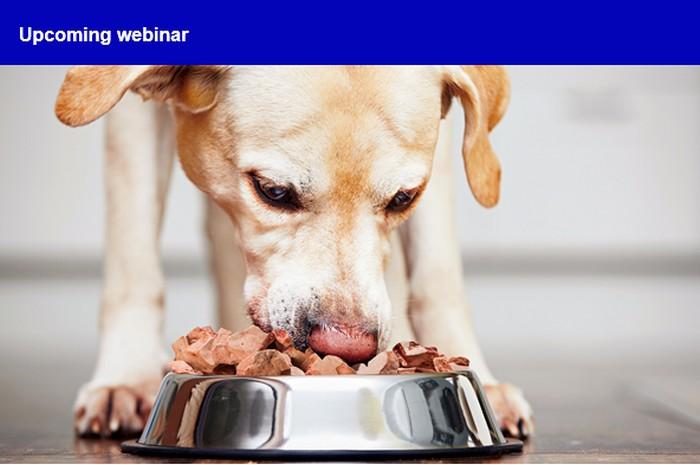 Drying
Drying
1+ MIN
31/08/2022
Unleash the potential of freeze-dried pet food
Date: Thursday Nov. 3rd
We will host two identical sessions. Please select the time slot that works best for you:
09:00 CET / 04:00 am US Eastern Time
Register here ›
17:00 CET / 12:00 pm US Eastern Time
Register here ›
About this webinar:
During this webinar you will:
Understand the benefits of freeze-dried pet food
Explore the pet food freeze-drying process
Learn about critical aspects and challenges
Get the opportunity to quiz our experts, Maite Harguindeguy and Morten Woldsted Pedersen
The webinar will last for 45 minutes, including Q&A.
Meet the experts:
Maite Harguindeguy – Process Specialist, GEA Process Engineering
Morten Woldsted Pedersen – Area Sales Manager, GEA Process Engineering
Can't make it? You should still register. All registered attendees will be able to access a recording of the presentation after the event, so you can still see the session on your own time.
by All Pet Food
 Dogs
Dogs
4+ MIN
30/08/2022
New dog food? Study shows Fido's gut bacteria could turn over within a week
The dynamic dance between nutrients, microbes, and their chemical products is well documented in dogs and other mammals, but until now, scientists were only guessing at the timeframe for microbial turnover. A new study from University of Illinois animal scientists documents the change takes place in less than a week. "As long as I've been doing animal nutrition research, we've argued over how long we need to feed a new diet before collecting samples, when everything's stabilized," says Kelly Swanson, Kraft Heinz Company Endowed Professor in Human Nutrition in the Department of Animal Sciences and the Division of Nutritional Sciences at U of I and co-author of the new study. "No one has ever tested it definitively." It turns out microbes stabilize very quickly. They begin making entirely new chemical products within two days after dogs start a new diet. And it only takes six days for microbial communities to shift and stabilize. "Metabolites change really quickly, within a couple days. Bacteria responsively metabolize and deal with the substrates they're given in the new diet. Then it takes a few more days to sort out the microbial pecking order, if you will," Swanson says. "Our data show everything stabilizes by day six, so animal nutrition researchers could confidently sample and find a stable microbiome within 10 days." Swanson's team fed dogs a common dry kibble diet for two weeks before abruptly switching to new diets for an additional 14 days. Half the dogs ate a high-fat, high-protein canned diet and the other half ate a high-fiber kibble. Meanwhile, researchers collected poop two days after the diet change and every four days after that. Because science demands replication, the researchers did it all twice, switching dogs to the opposite experimental diet the second time around. The team extracted microbial metabolites from each fecal sample, those chemical products of microbial metabolism that can impact a dog's overall health. They also identified bacterial species in the fecal samples to show how the microbial community changed over time. Finally, they correlated metabolites with bacterial species, something that hasn't been done before for most bacteria. "Oftentimes, we feed a diet and collect the feces, but there's kind of a black box in terms of what's going on in the gut. We know what some bacterial species metabolize, but definitely a lot of it is unknown," Swanson says. "Our correlations are the starting point to connect some of the dots, but more targeted research still has to be done." The primary goal was to track microbial changes over time, but the research also corroborated previous findings indicating greater health benefits of a high-fiber diet over a high-fat, high-protein diet for dogs. Those findings weren't a surprise, but the fact that the two diet extremes reached an equilibrium on the same timeframe was unexpected. For both diets, the team detected metabolite changes on day two and bacterial community changes by day six. Swanson says broad strokes of the study may be applicable to other mammalian microbiome systems, especially those like pets and livestock that eat the same controlled diet every day. For example, the speed at which the gut microbiome responds and stabilizes after a nutritional change may be universal. And although particular bacterial species and strains may differ among dogs, people, and other mammals, metabolite/species correlations may be similar across hosts. Is there a takeaway for dog owners? Swanson says although his study tested a very abrupt diet change, his results support the common guidance to shift to a new dog food brand gradually. "People usually suggest moving pets over to a new diet over a seven-day period. Our study suggests the microbes can completely change over in that timeframe," he says. "When you switch diets, the body has to adjust, but the microbes have to change as well. If they're not in a happy situation, you end up with loose stools or flatulence. So it's probably good to do it a bit more gradually at home than we did in the lab." This study was done in partnership with NomNomNow, Inc. a direct-to-consumer producer of fresh pet food and health products. Nom Nom has an extensive pet health and microbiome database, which allows them to engage in a variety of microbiome-focused studies in the pet population. "We're really excited about the outcomes of this trial," says Ryan Honaker, Nom Nom's Director of Microbiology. "Understanding the microbiome is central to our efforts in improving pet health, and this study brings us another step closer uncovering how the canine gut actually responds to a new diet." Source: University of Illinois College of Agricultural, Consumer and Environmental Sciences
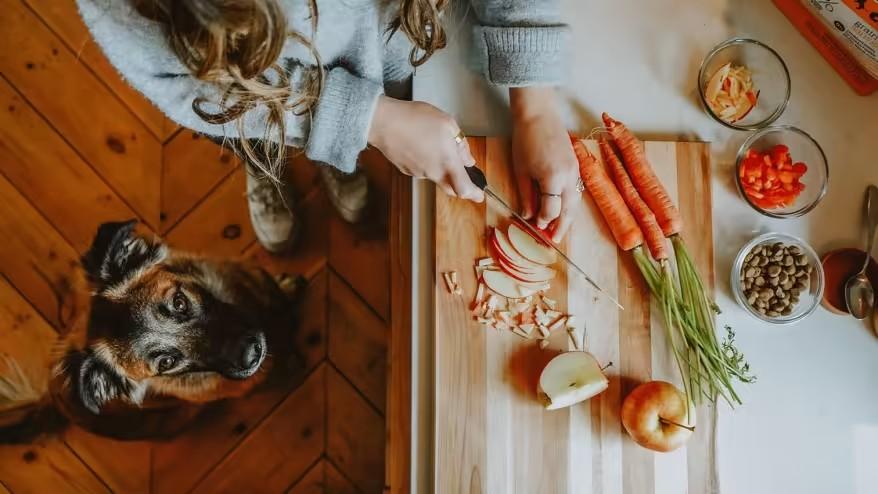 Animal Origin
Animal Origin
4+ MIN
29/08/2022
What You Need to Know About Raw Dog Food Diets
What Is a Raw Dog Food Diet?
Raw dog food diets have been around for quite some time despite being controversial. In recent years, they've been increasing in popularity. Raw diets usually contain ingredients like raw meat, uncooked eggs, and bones (both whole and ground).
Some of the perceived benefits of a raw dog food diet include:
Better stool quality
Improved skin and coat health
Cleaner teeth
Better digestive health
Weight management
However, there has also been a lack of scientific evidence to back up these claims while there are many documented concerns about the risks related to raw meat diets.
Some of the risks associated with raw dog foods include:
Broken teeth
Digestive upset
Intestinal damage due to sharp bone fragments
Nutrient deficiencies
Pathogenic bacteria contamination
Most veterinary and public health associations (AAHA, AVMA, CDC, FDA, CVMA, FEDIAF) advise against raw foods for dogs. Because of food safety concerns, the risks of feeding a raw food diet not only affects pets but we humans as well.
Concerns of Feeding A Raw Food Diet
Two main concerns when feeding any food to pets are:
Is it safe and free of harmful pathogens that can make your pet (or you) sick?
Does the diet provide all the nutrition your pet requires?
Things like cooking, high-pressure pasteurization, commercially-available food with a nutritional adequacy statement, and consulting with a qualified nutritionist are all things to think about when choosing to feed a raw food diet to your dog.
Raw meats have a high risk for contamination with pathogenic microorganisms, such as salmonella and E. coli. Just like humans, there's a risk of pets getting food poisoning from raw meat. There's also the challenge of making sure that raw meat is handled carefully to prevent cross-contamination, which can result in the people in your household getting sick.
If feeding a homemade food diet to your pet is important, consider cooking it to eliminate pathogens. There isn't any evidence that food must be raw to get the perceived benefits mentioned above. However, cooking will provide peace-of-mind that the food is not only safe for your furry friend but yourself and your family too.
Consider High-Pressure Pasteurization
If you would prefer not to cook your pet's food, another option to consider is buying a commercial raw diet that has been treated using high-pressure pasteurization (HPP).
HPP destroys pathogens while having little impact on the benefits of the food. It uses pressure rather than heat to kill harmful bacteria. This way, the food remains raw while increasing its safety. Before buying a commercial raw diet, contact the manufacturer to determine if they use HPP and what other food safety systems they have in place to provide high-quality food.
Nutritional Requirements for Dogs
When considering a raw or homemade diet for your dog, it's important to know what we refer to as 'nutritional adequacy'. A nutritionally adequate diet contains all the nutrients your pet requires in the correct quantities. Often, when nutrient levels are tested in homemade diets, they are found not to meet nutrient requirements. Therefore, we recommend getting in touch with a qualified nutritionist to review your diet plan to make sure it is nutritionally balanced!
If choosing to feed a commercial diet, either raw or cooked, it's important to choose a suitable food for the species (dog or cat) and life stage2 of your four-legged friend. You can also call the company and find out who made the food and their qualifications. These two steps will give you a peace-of-mind that the food you're serving will meet your pup's nutritional requirements.
Other Nutritional Considerations
Another factor to consider is the nutrient content of the ingredients included in a raw diet. Certain nutrients need special attention because of the limited number of foods that contain them. For example, vitamin D is only found in certain foods, such as fatty fish, beef liver, and egg yolks.
Other nutrients, such as calcium and phosphorus, have a smaller range between the minimal and maximum requirements. These need to be taken in the correct amount to prevent disease, especially for bone health in young, growing pets.
Because of this, pet food companies test their ingredients and products to ensure the food contains the right amount of each essential nutrient. However, for individual pet parents, testing can be expensive and usually isn't feasible. Complete and balanced dry and wet pet foods made by a company that sets high food safety and quality standards (including testing for pathogenic bacteria) and has qualified nutritionists on staff takes the guesswork out of feeding your beloved pet.
By Now Fresh
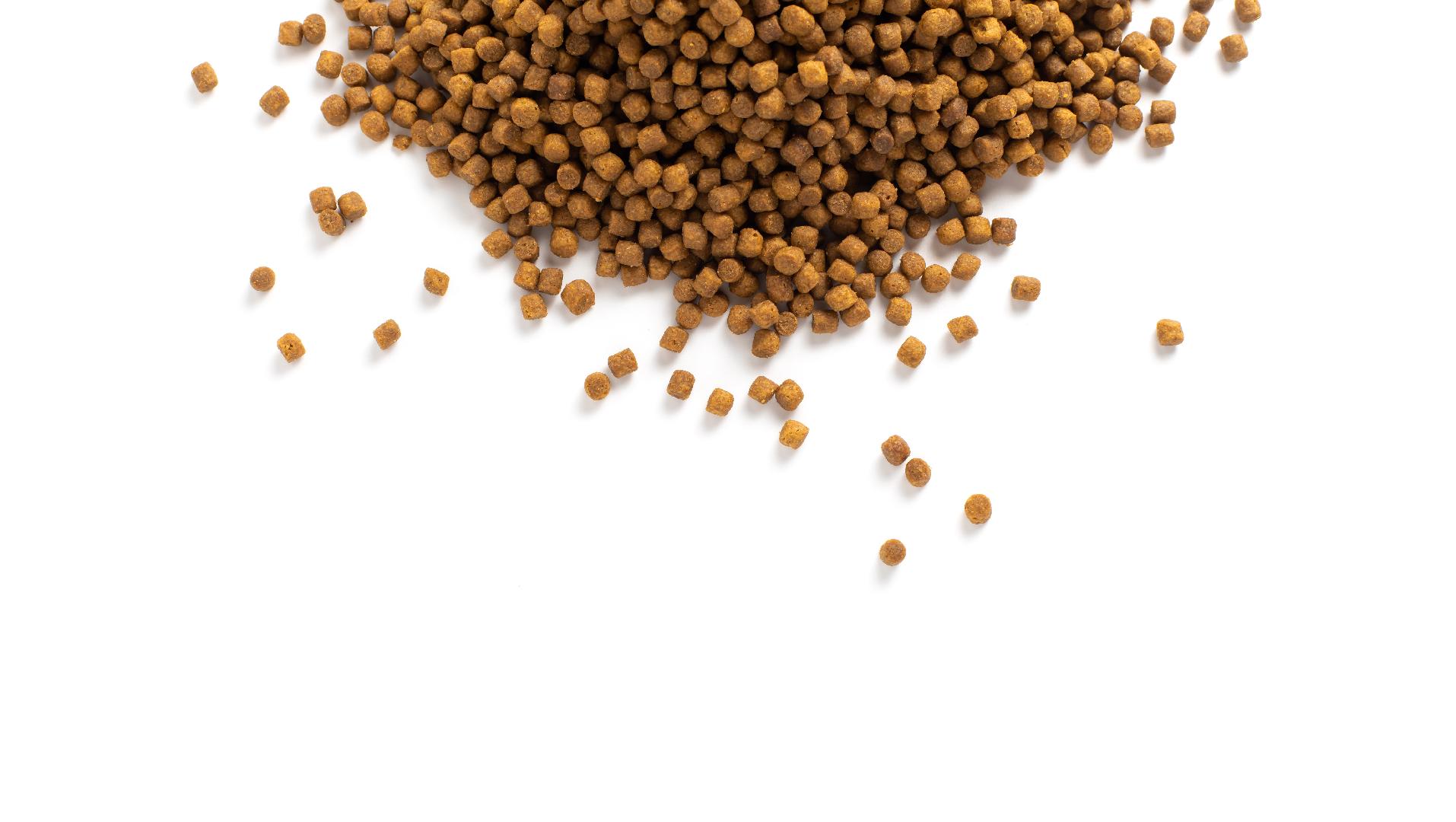 Trends
Trends
8+ MIN
25/08/2022
Market trends and the development of new protein sources in Pet Food
According to the United Nations Organization (ONU), the world population will reach almost 9.6 billion in 2050 (ONU, 2019). The food needed for this population, with an ever-increasing lifestyle and meat consumption, will be 48.6% more than current production. To meet this demand, an intensification of food and animal production has been promoted, which must be done in a sustainable way to guarantee a healthy planet for a constantly growing global population (FAO, 2017; Liua et al., 2022). In this context, the "Sustainable Development Goals" (SDGs) were developed, which is an interrelated strategy for the promotion of sustainable development practices and solutions, to which it is expected that, in 2030, every developed country and its industries will be aligned to (ONU, 2015). The growth in population and pet ownership contributes to the expansion and greater representativeness of the pet food segment in the global market. In relation to its trends and the important role that the sector plays in world production, the industry must also contribute to SDGs achievement in the direction of sustainability in the coming years. In relation to pets, the term "sustainability" can be defined as the conscious management of resources and waste necessary to meet physiological needs without compromising the ability of future generations to meet their own environmental, social, and economic needs ( Acuff et al., 2021). In the pet food industry, it is common to work with a wide variety of raw materials. However, current debates are focused on protein sources, the macronutrient with the highest ecological cost (Berardy et al., 2019), and is an essential compound in diets for carnivorous species such as dogs and cats. It is also one of the criteria for the choice of balanced feed by their owners (Laflamme et al., 2008). In general, pet food formulations are known for their excess protein, with a great diversity of products in the segment and varieties of products on the market, such as those free of grains and natural foods (Beaton, 2014; Wall, 2018) that promote direct competition with some ingredients of human food (Swanson et al., 2013; Okin, 2017). On the other hand, dog and cat foods are positively associated with the rendering process, which promotes environmental benefits by transforming by-products from slaughtered animals into nutritionally useful ingredients such as animal-derived meals (HOA) (Meeker; Meisinger, 2015; Wilkinson; Meeker, 2021). Despite the conventional use of HOA in animal feed with its respective environmental benefits, other protein sources are also used in feed formulation, such as soybean meal and corn gluten. Research and development of different types of alternative proteins are interesting, as they have nutritional and sustainability potential independent of conventional animal production, contributing to less competition with foods intended for human consumption. In addition, debates must be generated about the need to use increasingly lower amounts that meet their requirements. In this context, similarly to what happens in human food research (Karmaus and Jones, 2021), the main emerging proteins of interest for pet food have been those obtained or derived from unicellular microorganisms and insects. Microalgae are a big bet as a sustainable food source due to their ability to convert sunlight and inorganic and organic carbon sources into biomass of high nutritional and functional quality (Nicolai et al., 2019). In turn, some species are rich sources of protein and essential amino acids with antioxidant effects and are also sources of lipids such as polyunsaturated fatty acids. In general, the term crude protein, within the diverse group that makes up the microalgae, the species can be highlighted: Spirulina platensis and Chlorella Vulgaris that have between 60 - 71% and 51 - 58%, respectively of this nutrient (Souza et al., 2019). However, the ideal nutritional composition of algae depends on its cultivation, processing, and environmental factors, such as pH, light intensity, nutrients, CO2 supply, and temperature. Compared with other protein foods, microalgae are presented as competent organisms to synthesize essential amino acids such as: leucine, isoleucine, methionine, lysine, threonine, valine, or histidine (Guil-Guerrero et al., 2004). They also may present similar or even higher values in terms of lysine and methionine when compared to: legumes, corn, and soy-based products (Spínola., 2021). However, small deficiencies can be observed among sulfur amino acids such as methionine and cysteine, characteristic of plant proteins (Becker, 2004). Despite having balanced food for dogs and cats on the market, including microalgae, mainly Spirulina platensis and Chlorella SPS with levels of up to 0.4% (Beynen, 2019), there is still little research evaluating the digestibility and palatability of these elements in pet food. In addition to this, and beyond the fact that the use of microalgae in the pet food industry is gaining importance due to the high nutritional values and the increase in production, obtaining the total biomass is still not enough to meet the enormous industry needs, contributing to its inclusion only in premium- and super-premium-rated pet foods. Within the products of microbial origin, yeasts are by-products of the brewing industry (Butolo, 1991), which are currently being applied in large numbers in fermentation processes (Bourgeois and Larpent, 1995). In pet diets, yeast use has been incorporated due to its high protein and low lipid content, showing beneficial effects on the health of the dog microbiota (Lin et al., 2019). However, little research has been done related to them as a protein source in dog and cat food. In the pet food industry, yeasts already work as a functional ingredient at a low inclusion rate, which can be justified because high inclusion levels are associated with soft and malformed fecal matter, with a level recommendation of up to 15%. This is due to the limited availability and high price in the market, such as that of brewer's yeast (Martins et al., 2013). In a study (Martins et al., 2013), when comparing the inclusion in diets with 15% of different types of yeast: brewer's yeast, whole sugar yeast, and self-lysed yeast (spray-drying process), it was observed that Brewer's yeast had more protein and tended to be more digestible than the two cane yeasts. However, the digestibilities of all three yeasts were adequate for use in dog diets. A recent study concluded that dry cane yeast can be included in canine diets with safe levels close to 30% (Reilly et al., 2021). Despite the potential for sustainability and the advantages in relation to other microorganisms, mainly due to its ability to assimilate a wide variety of substrates, its high growth rate, and ease of separation of its biomass (ICIDCA, 1999), the use of Yeasts as a source of protein in diets for pets is little known, and further studies are necessary. Regarding the use of insects in animal feed as an alternative protein source to those already existing, this can be justified by its nutritional value and environmental benefit. Edible insects constitute a good protein source whose concentration can vary between 40-70% in dry matter, depending on the species (Lisenko, 2017; Sosa and Fogliano, 2017). They also have a good level of essential amino acids (Oliveira et al., 2017). In addition to this, insects are a great lipid source, which can vary from 10 to 50% in dry matter, with a large amount of linoleic acid (18:2 n-6) and alpha-linolenic acid (18:3 n-3) when compared to other sources (Lucas et al., 2020). In addition, it has adequate levels of vitamins (riboflavin, pantothenic acid, biotin, folic acid) and minerals (calcium, iron, and zinc) (Govorushko, 2019). It is estimated that up to 50% of the insect industry is dedicated to the pet food segment (Huis, 2022). The investigations have been based mainly on the larvae of the black soldier fly (Hermetia illucens), tenebrio Molitor (Tenebrio Molitor), and cricket (Gryllodes sigillatus), being processed in the form of flour. Measured as fecal nitrogen, in dogs and cats consuming defatted, dried, and ground extruded diets of black soldier larvae (BSF), with an average inclusion level of 2%, digestibility ranged from 73.4 – 87.2% (Bosch and Swanson, 2021; Paßlack and Zentek, 2018; Yamka et al., 2019). In in vitro digestibility tests in dogs, results reached a coefficient of 89.7% (Bosch et al., 2014). Studies with tenebrio flour had apparent digestibility values of 83.6% for dogs and 80.4% for cats by the conventional method and varied between 91.3 – 92.5% in vitro digestion for dogs (Bosch et al., 2014; Bosch et al., 2016). With the inclusion of 8-24% cooked, ground crickets in extruded dry dog foods, digestibility ranged from 82.1-86.0% (Kilburn et al., 2020). Regarding the availability of essential amino acids, BSF can be limited to methionine for cats and threonine for dogs (Bosch and Swanson, 2021). Fecal quality was also investigated, with an inclusion of 24% cricket meal, and no inconsistencies were observed (Kilburn et al., 2020), also being verified with BSF at a 30% inclusion in dry extruded feeds (Meyer et al., 2019). Some studies (Kilburn et al., 2020; Paßlack and Zentek, 2018; Yamka et al., 2019) show that, in terms of palatability in dogs and cats, there are different preferences according to the insect species and their level of inclusion in diets. But, in general, dogs seem to accept food containing up to 10% BSFL meal and 24% crickets, while for cats it is 5% BSF. The nutritional composition of insects may allow the total substitution of some sources of plant origin, such as soybeans, used in balanced feed. Bosch et al. (2014) verified that the crude protein content of insect substrates was higher when compared to soybean cake protein and was similar to that of poultry and fish meal. In addition, insect-based diets are considered hypoallergenic and are emerging as an option for guardians of cats and dogs suffering from food sensitivities (Bosch and Swanson, 2020). Other interesting aspects of the use of insects for feeding dogs and cats are their effectiveness in feed conversion, low greenhouse gas emissions, and low water and land use needs when compared to other species (Van Huis and Oonincx, 2017). Thus, they are not necessarily in competition with food for humans (Liu, 2020; Huis, 2020), and their management tends to be more sustainable than in other conventional animals such as cattle, pig, and poultry production (Bosch and Swanson, 2020; Liu, 2020). To have a more efficient and more widespread pet food production, more studies are necessary for a better understanding of aspects such as: undigested fractions of insects (chitin), present in the cuticle of these species, its prebiotic potential, and the impact on pet health (Bosch and Swanson, 2020). In addition, better legislation would have to be developed, the amounts of inclusion determined, and research into aspects related to the preference, acceptance, and trust of dog and cat guardians for these alternatives because they are also part of this challenge. Overcoming barriers to sustainability will require successful production strategies, support from cat and dog guardians, and further research. Por: Jéssyka Laura Galdino Costa / Ingrid Caroline da Silva / Josiane Aparecida Volpato / Fernando José González González / Ricardo Souza Vasconcellos Fuente: SINPET
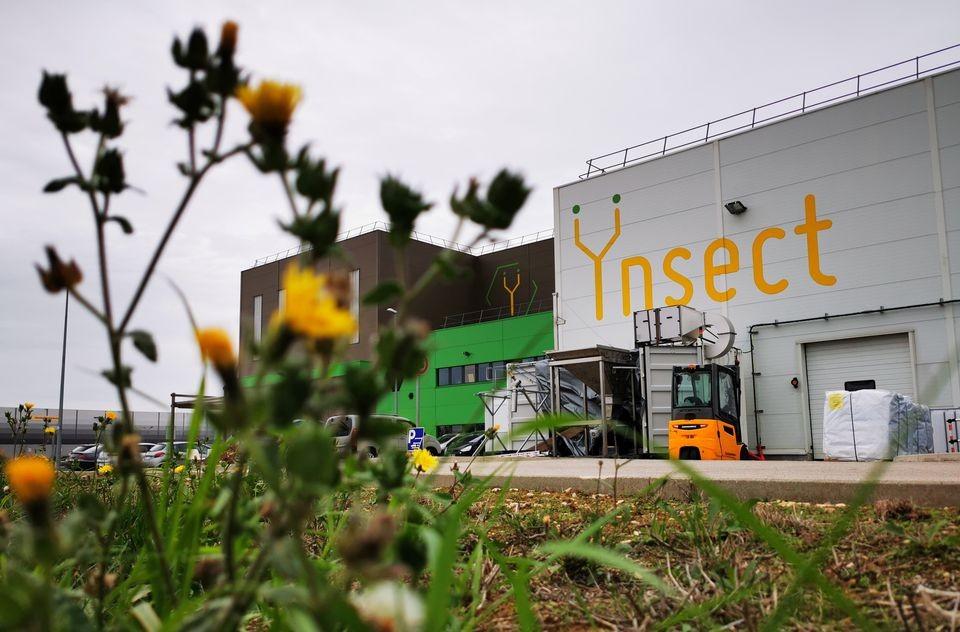 Animal Origin
Animal Origin
2+ MIN
24/08/2022
France's Ynsect expands in U.S. pet food market with Jord buy
Ynsect breeds mealworms that produce proteins for aquaculture, livestock, pet food and fertilisers. The company made its first entry into the U.S. market in late 2021 through a supply deal to Pure Simple to make premium food for dogs. The acquisition of Jord Producers, based in Nebraska, will allow it to enter the fast-growing backyard chicken feed sector, it said. The number of Americans having chickens in their backyards has doubled since 2018. By 2026, the U.S. market is predicted to reach approximately $400 million, according to a recent study by consultancy Arthur D. Little, cited by Ynsect. Pet food makers are increasingly using insects such as flies and mealworms as a sustainable source of protein, capitalising on rising pet ownership and booming demand from environmentally conscious consumers. read more Farmed bugs require far less land, water and feed than livestock and they emit less greenhouse gasses. French rival InnovaFeed signed a deal with U.S. grains merchant Archer-Daniels-Midland (ADM.N) last month to supply insect protein to its pet food division. Last year Ynsect agreed to take over Dutch firm Protifarm, a leader in insect ingredients for human food, marking a move into the food market amid rising demand for healthy, eco-friendly eating. The company, which raised around $450 million from global investors, is building what it says will be the world's largest vertical farm, which uses stacked layers, in Amiens, northern France, set to open in the last quarter of 2022. It confirmed a target to reach revenue of at least 500 million euros ($549 million) by 2026 and said it aimed to have 15 factories worldwide by 2030. By Reuters
 Micro Ingredients
Micro Ingredients
3+ MIN
23/08/2022
Pet Parents and their pets sharing the search for well-being
Prebiotics has long been used as gut health promoters in dog and cat foods, but only recently have pet owners recognized and sought them out in food. The beneficial effects of prebiotics in animals are similar to those found in humans, with more than 50% of dog and cat owners in the US (55%), Germany (76%), and UK (61%) looking for products that support their animals' digestive and intestinal health (Mintel, 2021). Prebiotics are substrates that are selectively used by microorganisms in the host's gastrointestinal tract and have health benefits for those who consume them. Among the main prebiotics used in the pet food industry, we can mention fructooligosaccharides, inulin, and mannan-oligosaccharides, some fibrous ingredients can also act as prebiotics in the formula, as long as they are used selectively by the host microbiota, they promote health ( pathogen inhibition, immunity modulation, mental health, effects on insulin resistance, among others) and may have evidence of their benefits in the target population. Mannan-oligosaccharides derive from the cell wall of yeast; they are made up primarily of protein and carbohydrates. MOS has a complex structure composed of phosphorylated mannose, glucose, and protein. Its consumption stimulates the growth and metabolic activity of beneficial bacteria, which results in the production of antibacterial substances and inhibits the proliferation of undesirable microorganisms, such as Escherichia coli, Clostridium spp., and Salmonella. Beneficial bacteria also produce substances with immunostimulatory properties, interacting with the immune system in various ways, including cytokine production, mononuclear cell proliferation, phagocytic activity, and induction of synthesis of higher amounts of immunoglobulins, especially class A. A known characteristic of mannan-oligosaccharides is their effect on increasing the concentration of fermentation products in the colon; that means that it is related to the production of short-chain fatty acids. Short-chain fatty acids: acetate, propionate and butyrate, and lactic acid are considered an additional energy source for the host, promoting a reduction in the pH of the colon and, therefore, inhibiting the growth of pathogenic microorganisms. Butyric acid is known as the main source of energy for colonocytes and can represent up to 70% of the energy used by the colonic mucosa. It has a principal action in cell growth regulation and differentiation in the intestine and, consequently, influences the integrity of the mucosa to maintain a normal cell phenotype and reduce the risk of colon carcinomas. Short-chain fatty acids also promote blood flow and muscle activity in the colon and stimulate mucin production and enterocyte proliferation. ActiveMOS is a source of mannan-oligosaccharides from Saccharomyces cerevisiae. When added to adult dog food, it increases butyrate production by 32.5% and contributes to the reduction of biogenic amines by 38%. Biogenic amines can be generated from the metabolism of microorganisms, chemical reactions, or other endogenous sources. They have important physiological functions, but at high levels, they can cause harmful effects on the host. ActiveMOS contributes positively to the digestion and metabolism of the host and mitigates the side effects of the products generated by excessive protein fermentation. HyperGen has an exclusive production process that guarantees a high content of functional soluble MOS and partial exposure of the beta-1,3/1,6-glucan layer. Its enhanced prebiotic effect gives it modulation of the local intestinal immune response and effective action on intestinal health. HyperGen increases the concentrations of butyrate, in addition to favoring beneficial bacteria: Lactobacillus ssp. and Bifidobacterium sp. This modulation of the intestinal microbiota improves local immunity and promotes better general health and well-being for the individual. This evidence reinforces the concept that health begins with good nutrition. The inclusion of sources of mannan-oligosaccharides in food formulas for dogs and cats are important tools to guarantee the intestinal health and well-being of the animal. By: Thaila Cristina Putarov, Gerente Técnica y de Productos de Biorigin Source: Biorigin
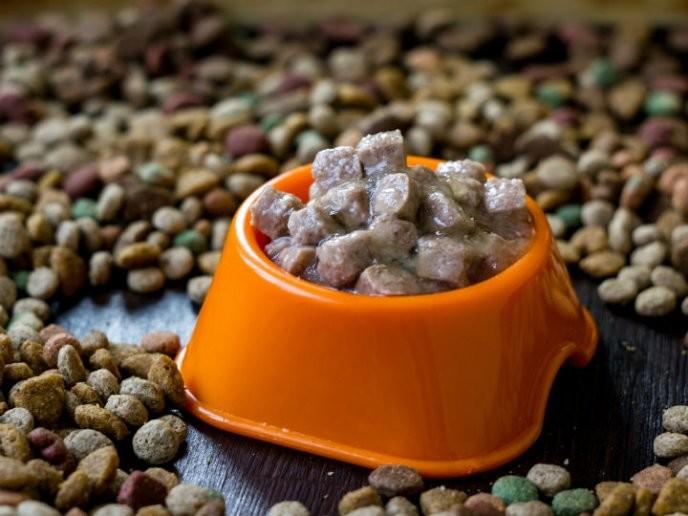 Formulation
Formulation
4+ MIN
22/08/2022
Natural Pet Food
The pet food industry instilled the idea that only dry extruded pet food had all the nutrients and the rest of pet food sources were not correct. Research has come a long way, and today industries can already produce foods with a high inclusion of protein sources and nutrients. Research has gone further, and even medicated foods have been manufactured with the aim of alleviate bone wear, heart problems, obesity and urinary problems in our beloved pets.
It turns out that, in recent years, it has been proven that all this is not exactly true. There are foods that dogs and cats can´t really eat due to the toxicological conditions that these type of pet foods can cause to them.
But in general, it´s possible to balance a diet for dogs and cats using the same foods we eat and even giving a touch of refinement to the formulas. In some of them you can use mushrooms, pumpkins, seeds such as flaxseed and yeast for better digestion. Oils with excellent sources of fatty acids are also used, which help fight diseases and regenerate cells in the body, preventing heart disease, among others. The most used are coconut oil, linseed oil, extra virgin olive oil, as well as the tastiest and cheapest... lard.
Other ingredients can also be used, such as whole grains, meats, vegetables and legumes, turning the animal's food into an explosion of flavours, nutrients and, of course, providing satiety.
The process of this mixture of ingredients is done as we do it at home. Ingredients are properly mixed and packed, the packages are placed inside an autoclave (equipment that resembles a pressure cooker), which will cook the ingredients for a certain period of time. The cooking time will depend on the formulation and the temperature varies between 100 and 110ºC.
The distribution of these products has been a challenge for the companies committed to this new market niche, since it´s a food with high percentage of moisture. Logistics are required, in addition to packaging that ensures the product has a shelf life and expiration date as long as that of its main dry pet food competitors.
Another point to take into account are the oxidative sources, light and oxygen, which can reach these foods and reduce shelf life.Some companies make the presentation of these products in vacuum transparent plastic containers, but later, they are placed in a cardboard container, to protect them from light.
Companies offering canned products have less risk; however, the investment is greater in this type of packaging. Canned goods are assured the product will have the validity shown on the label, unless the packaging suffers any damage.This market niche is going down an uncertain path, because in less than 2 years there has been an explosion of brands that offer products with different formulations.
They are products with good prices in the market, but since the market is so competitive, few companies will remain on top. The rest of the companies will compete to guarantee their products on the shelves
The best way to work with this product is to enter a market niche that encourages people to feed their pets a natural diet, free of GMOs and colorants.
Examples of this are pet parents who are concerned about the health of those pets that suffer from food allergy problems or need to lose weight, vegan parents who want to incorporate their pets into eating habits or a different lifestyle such as a vegetarian diet. In these cases, products such as milk, eggs, meat meal or even pieces of meat will be excluded from the diet, which will be replaced by vegetable ingredients, enriched with omega 3 and 6 vegetables, supplemented with essential vitamins and amino acids such as Vitamin A, L-Carnitine and L-Taurine in the case of cats.
The market is very encouraging for the development of new products, technologies and flavours. We need to take advantage of the technologies that are within our reach, to make life easier for parents and thus prolong the life of their pets. Today it´s possible to offer a healthy and nutrient-rich diet to our pets, either in the form of dry or natural food. The important thing is to be updated on the news and opportunities offered by the market.
The lesson we take from all this is that our parents, grandparents or even ourselves, in the past we did well to share our food with our pets. It´s likely we didn´t give them a balanced diet, but we weren´t contributing to their illness, since there was almost always meat, cereals and sometimes some vegetables within the food we offered to them.
by Rafael Resende Silva - R2S Consultoria
www.portalr2s.com.br
Source: All Pet Food
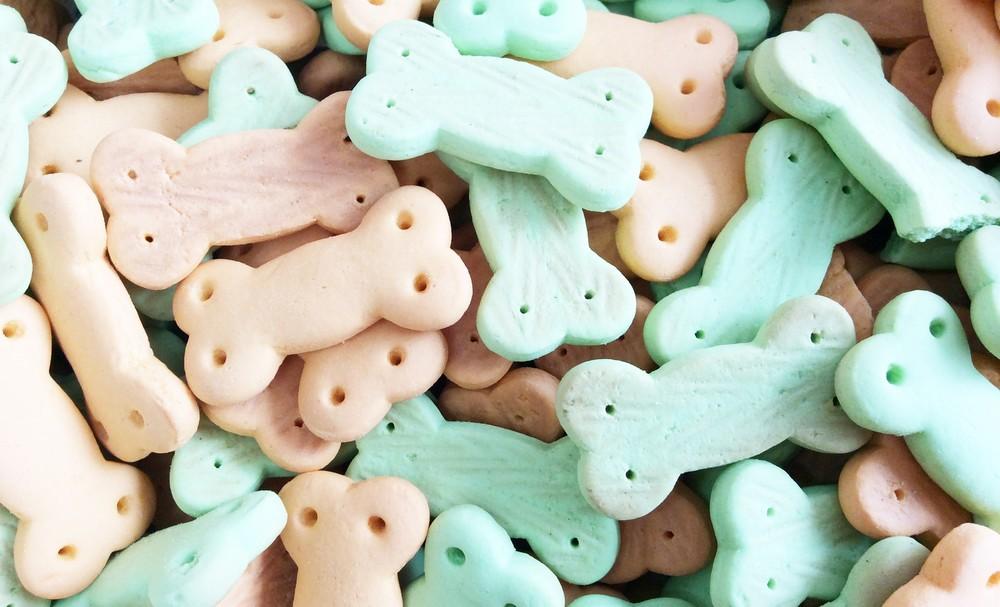 Formulation
Formulation
3+ MIN
19/08/2022
Soft Kibbles in Pet Food: A step forward in the trend towards humanization
Many pets prefer wet food over dry food because they have textures similar to meat and are easy to eat or chew. On the other hand, they can be more complicated to offer, they are usually less available in the market and are almost always more expensive. Some owners may not like them because they generate some mess during the intake. Soft kibbles combine the benefits of wet foods with the ease, availability and practicality of dry foods. Soft or semi-moist kibbles refer to dry kibbles with a soft, elastic texture and a higher percentage of moisture compared to traditional dry pet foods. They´re an intermediate between dry and wet pet food or sauce. In the market you can find pet foods with only soft kibbles or in combination with dry foods. Every day there are more and more manufacturers that incorporate this type of innovation in their formulas, since many pets prefer them and we can produce them on the same production line as dry pet food. For the manufacturing of soft kibbles, it´s necessary to incorporate additives that provide plasticity, moisturizing properties, emulsifying, texturizing and palatant agents. The elaboration process includes variables whose purpose is to achieve high gelatinization and expansion of starches, moisture retention (15-17%) and care for the integrity of the kibble itsef. The success lies in great extend on the managment to keep the soft kibbles stable over time, even if they are mixed with dry food. The final product achieves higher moisture at a low Aw (0.65) thanks to the inclusion of moisturizing ingredients. These help keep this value low, helping to keep pet food free of microbial growth and with a long shelf life. By achieving a stable increase of moisture within the Kibbles, it´s possible to recover row material, which will be reflected in economic terms at the end of the day. Palatability and acceptability are markedly increased in dry pet foods that include a percentage of soft kibbles. As we can see in Table 1, the intake ratio is consistently higher in a food with 15% soft kibbles, compared to a food without inclusion. Both textures, soft and crispy, and meat flavors are synergistically combined, generating greater attraction to the food. For this test, the kibbles were produced using the formula proposed by Callizo Aromas and incorporating the Zoasoft additive. The production of soft kibbles also requires paying special attention to the selection of the ingredients included in the formula, and to the conditioning and extrusion process. These are going to be key to the successfull production of this type of pet food. Drying, mixing and packaging are variables that must also be managed to ensure the product keeps its properties. With the inclusion of soft kibbles in the mix, it´s possible to overcome a barrier towards humanization, which constitutes a very important innovative marketing tool. Undoubtedly it has become in an instrument of marketing, differentiation, relaunch and positioning of the brand. Written by Callizo Aromas Source: All Pet Food
 Animal Origin
Animal Origin
4+ MIN
18/08/2022
The nutritional needs of pets during summer
So, what nutritional needs do pets have during the warm or even hot months? Do we have to change their diet on hot days? And what is most important to keep in mind not only during hot temperatures but also all year long? Your pet's appetite may change during the summer Even though there may not be many studies on how seasons affect cats' and dogs' appetites, there are a few that confirm appetite might decrease during the summer. Just like we want a specific type of food during cold months and another in the summer, the same can happen to pets. According to this study made on 38 cats, it seems that our furry family members eat the most between October and February. And they eat about 15% less food from June to August. Now, dogs that are more into the outdoors or involved in high-intensity sports need more calories to help them generate heat during the winter months. To be more accurate, they need around 7.5% more calories for every 10-degree drop in the temperature. And the opposite applies in the warmer season, which means they tend to need about 7.5 percent fewer calories every time the temperature increases by 10 degrees. Do I need to change my pet's diet? If your pet is on the right diet, then there's no need to change it during the summer months. In general, you should keep your pet's diet constant all year long. Of course, if your dog or cat has a special health condition, such as allergies, obesity or arthritis, then you need to make some dietary changes, even though is summer. If that's the case, then don't change their food all of a sudden, instead add the new pet food gradually. Sudden changes can lead to other health issues, such as vomiting and diarrhea. So, there is no need to change your pet's diet completely in the summer, as long as the current one is a balanced diet that gives them all the nutrients they need all year long. It's important to choose the right diet for your pet You should always pay attention to your pet's diet, whether summer or winter. As the studies showed, daylight and temperature have been found to have an effect on your pets' metabolism and the amount of food they need to stay well. But what is the right diet? Well, the right diet is a balanced one that includes all the nutrients and also satisfies their water needs. For that reason, you should opt for a high-quality healthy pet food that has specifically been made with your pet's nutritional needs in mind. And among those essential nutrients are omega-3s. As dogs (and cats) can't produce these essential fatty acids in their bodies, they need an effective diet that gives them a daily dose of omega-3s all year round. Here are some of the health benefits of omega-3s and choline for pets backed by science: That's only possible if you choose pet food that offers a balanced diet of omega-3s and omega-6s. During summer (or any season), you can also give your dog delicious treats with omega-3 fatty acids. Water is essential Water is vital no matter the season. But especially during those hot days, pets need to have plenty of fresh water available all the time. So, make sure to carry water with you during walks in the nature, for example. Or if you're at home, make sure that your pet drinks enough water. If their body doesn't get enough water, there can be unpleasant consequences. In some cases, dehydration can even lead to overheat (hyperthermia) and low blood pressure. All in all, water is essential to every pet's diet and just a small water loss can be critical to your pet's health. Krill - a super premium omega-3 source for pets Krill, this small crustacean that comes from the clean Southern Ocean of Antarctica, it's also a superior source of marine omega-3s EPA and DHA with a distinct advantage. The omega-3s found in krill are bound to phospholipids and this makes them more effectively incorporated into cell membranes. And this is what makes it extra special as the way these fatty acids are incorporated is essential to obtain the necessary health effects. Recent studies have also shown that the phospholipid-bound omega-3s from krill are more effective in raising omega-3 levels in a dog's body compared to triglyceride-bound omega-3s, like those found in fish oil. Written by QRILL Pet Team
 Manufacturers
Manufacturers
3+ MIN
17/08/2022
Colgate-Palmolive expands Hill’s Pet Nutrition with three manufacturing plants
The plants – in Orangeburg, South Carolina; Clinton, Oklahoma; and Washington Court House, Ohio – will be integrated into Hill's global supply network to produce dry pet food for Hill's Science Diet and Prescription Diet brands. The purchase agreement includes the transfer of the approximately 350 employees involved in the dry pet food operations.
Hill's is currently building a new canned pet food manufacturing facility in Tonganoxie, Kansas, scheduled to begin production next year, and in April completed the acquisition of a canned pet food plant in Italy, also to meet demand for its science-led pet nutrition diets.
'Our Hill's business is growing well, and we continue to invest to expand production capacity, improve our capabilities with initiatives like our new Small Paws Innovation Center, and better engage pet parents, veterinarians and Hill's retail partners,' said Noel Wallace, Chairman, President and Chief Executive Officer of Colgate-Palmolive Company. 'This investment will help further strengthen the Hill's business today and for the long term.'
John Hazlin, President of Hill's Pet Nutrition, added: 'Hill's is committed to enriching and lengthening the special relationship between people and their pets, and this additional production capability will help us reach more pets with our science-led foods and enable us to raise the level of service we provide to the specialty retailers and veterinary professionals that offer our products. We look forward to welcoming members of the Red Collar team to the Hill's family.'
Red Collar, an Arbor Investments portfolio company, will manage the dry pet food private label business for a transition period and will continue to own and operate its pet treats business and facilities. The acquisition is subject to regulatory approval and other closing conditions.
About Colgate-Palmolive Company
Colgate-Palmolive Company is a caring, innovative growth company reimagining a healthier future for all people, their pets and our planet. Focused on Oral Care, Personal Care, Home Care and Pet Nutrition, we sell our products in more than 200 countries and territories under brands such as Colgate, Palmolive, elmex, hello, meridol, Sorriso, Tom's of Maine, EltaMD, Filorga, Irish Spring, PCA SKIN, Protex, Sanex, Softsoap, Speed Stick, Ajax, Axion, Fabuloso, Soupline and Suavitel, as well as Hill's Science Diet and Hill's Prescription Diet. We are recognized for our leadership and innovation in promoting sustainability and community wellbeing, including our achievements in decreasing plastic waste and promoting recyclability, saving water, conserving natural resources and improving children's oral health through the Colgate Bright Smiles, Bright Futures program, which has reached more than 1.4 billion children since 1991. For more information about Colgate's global business and how we are building a future to smile about, visit www.colgatepalmolive.com. CL-C
About Hill's Pet Nutrition
Founded more than 80 years ago with an unwavering commitment to science-led pet nutrition, Hill's Pet Nutrition is on a mission to help enrich and lengthen the special relationships between people and their pets. Hill's is dedicated to pioneering research for dogs and cats using a scientific understanding of their specific needs. As a leading veterinarian recommended pet food brand, knowledge is our first ingredient with 220+ veterinarians, PhD nutritionists and food scientists working to develop breakthrough innovations in pet health. Hill's Prescription Diet therapeutic nutrition plus our everyday foods, Hill's Science Diet, Hill's Healthy Advantage and Hill's Bioactive Recipe, are sold at vet clinics and pet specialty retailers worldwide. For more information about our products and nutritional philosophy, visit HillsPet.com or HillsVet.com.
Contact: Thomas DiPiazza - Colgate-Palmolive Company
212.310.2607
 Market Information
Market Information
2+ MIN
16/08/2022
Is inflation impacting pet food spending?
The combination of an unpredictable supply chain, inflated costs for raw materials, longer lead times and unwavering demand have resulted in higher prices for finished dog and cat food products. The question is, how are pet owners responding? NielsenIQ reported data from the Bureau of Labor Statistics showing a 9.1% inflation increase from June 2021 to June 2022. In May, Adobe reported online prices for pet products were up 9.1% year-over-year and 1.1% from April to May 2022. According to the Adobe Digital Price Index, online inflation for pet products was observed for two full, consecutive years — from April 2020 to April 2022 — with a peak at 7.8% year-over-year increases in September 2020. According to NielsenIQ, the total pet care price index in May 2022 was 119.5, up 18.31 points in May 2021. This overall trend is reflected in the price indexes for dog food and cat food; dog food was indexed at 121.8 in May 2022, up 18.66 points year-over-year, while cat food was indexed at 118.9, up 18.56 points year-over-year. NielsenIQ described this data as 'a dramatic rise in pricing for essential goods for pets,' and expects the index to continue rising into the third quarter of 2022. This story of inflation is being told across human food categories, as well as the energy sector, NielsenIQ reported. With inflation affecting nearly every major product category, from gasoline to groceries to pet products, how has demand for pet food and treat products been impacted? According to NielsenIQ, pet owners are reluctant to adjust their pet spending to inflationary pressures. In the company's BASES survey conducted in April 2022, roughly 66% dog and cat owners reported if their typical pet food increased in price, they did not expect to choose a different, cheaper option. Additionally, non-discretionary purchases such as treats, vitamins, supplements and toys continue to be prioritized by pet owners to improve quality of life, health and wellness of their pet, regardless of price hikes. Although nearly half of respondents said inflation has no impact on their purchasing channel of choice — online or in-store — 40% of pet owners told NielsenIQ they are more likely to shop online in response to rising prices. However, NielsenIQ reported little to no change in market share between brick-and-mortar and online from April to May 2022, with brick-and-mortar pet care sales representing 76.3% of total sales and online sales account for the remaining 23.7%. Even with inflationary pressures expected to continue, the pet food market continues to prove its resilience, and pet owners have made it clear that they will continue to prioritize the health and wellbeing of their furry companions at any cost. by Jordan Tyler - Digital media editor of Pet Food Processing.
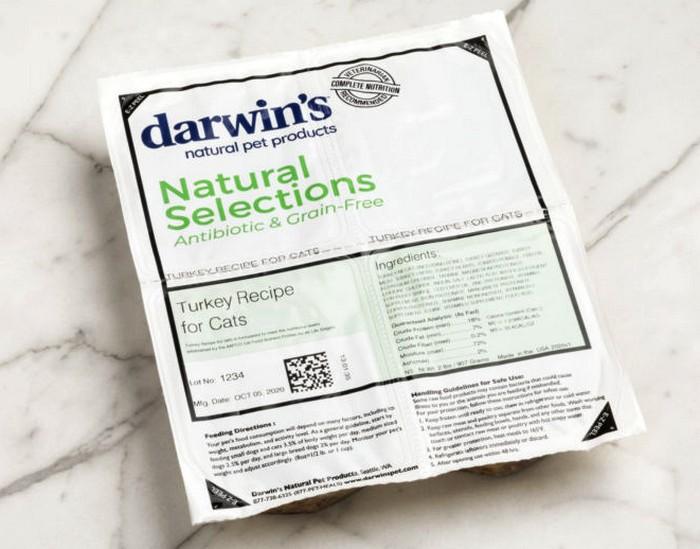 Market Information
Market Information
3+ MIN
12/08/2022
FDA Alert: Darwin’s Natural Selections Cat Food Lots Test Positive for Salmonella
Darwin's Natural Pet Products Natural Selections Antibiotic & Grain Free Chicken Recipe for Cats, Lot 9116, manufactured on May 2, 2022.
Darwin's Natural Pet Products Natural Selections Antibiotic & Grain Free Turkey Recipe for Cats, Lot 9121, manufactured on May 4, 2022.
The products are sold in white and clear plastic packages with blue and green labeling. Each pack weighs two pounds and consists of four separate units. The lot codes are on the front lower left unit of the package.
If you have these lots of Darwin's Natural Pet Food, or you can't be sure of the lot code of the products you have, throw them away. Do not feed them to your pets.
The FDA is issuing this alert because these lots of Darwin's Natural Pet Products cat food represent a serious threat to human and animal health.
Salmonella can affect both human and animal health. People with symptoms of Salmonella infection should consult their health care providers. Consult a veterinarian if your pet has symptoms of Salmonella infection.
The U.S. Food and Drug Administration is cautioning pet owners not to feed their pets two lots of Darwin's Natural Pet Food because products from these lots tested positive for Salmonella.
These products are Darwin's Natural Pet Products Natural Selections Antibiotic & Grain Free Chicken Recipe for Cats, Lot 9116, manufactured on May 2, 2022; and Darwin's Natural Pet Products Natural Selections Antibiotic & Grain Free Turkey Recipe for Cats, Lot 9121, manufactured on May 4, 2022. These products are manufactured by Arrow Reliance Inc., doing business as Darwin's Natural Pet Products, and are sold online direct to consumers.
The FDA collected and analyzed unopened samples of products from these two lots after receiving a report of illness in three kittens in a single household that had consumed the food and developed diarrhea. A stool sample from one of the kittens tested positive for Salmonella. A fourth kitten did not eat the food and did not become sick.
Whole genome sequencing of the Salmonella in the two products revealed that the turkey product contained Salmonella Typhimurium, while the chicken product contained Salmonella Typhimurium and Kentucky.
The FDA is issuing this alert because these two lots of Darwin's Natural Pet Products cat food represent a serious threat to human and animal health. Because these products are sold and stored frozen, the FDA is concerned that people may still have them in their possession and feed them to their pets.
The FDA recommended that Arrow Reliance Inc. voluntarily recall these products and notify the public but, as of August 5, 2022, the company has not done so. Darwin's has posted a statement that notes the following:
We believe the FDA's request is wholly unnecessary; there are no pet health risks to address. We also believe the FDA's request is based on flawed regulatory decision-making and have taken steps to make our position clear with the agency.
Several months ago, a consumer's young kittens ate from an adult cat's bowl that contained a portion of raw food; afterward the kittens had diarrhea. When the individual contacted our customer service team, we reminded them that we – and health experts across the industry recommend cooking raw pet food before feeding it to kittens under 4 months old. We also advised the consumer to dispose of the remaining food and we issued a full refund. The kittens did not experience any other health issues and did not require further veterinary care. The adult cat never developed any adverse effects.
We have not received any complaints from other customers who received products from the same lot number. All of the product lots in question were shipped months ago direct to our consumers, and we believe the food has been consumed
By: Pet Age
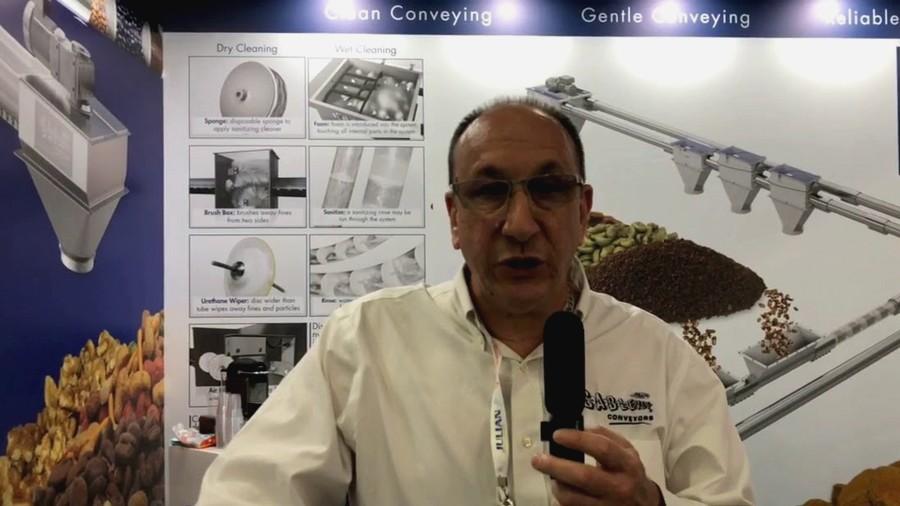 Conveying Systems
Conveying Systems
3+ MIN
10/08/2022
Q&A with Karl Seidel, Marketing Director of Cablevey Conveyors
The findings reveal there is a high level of automation in food processing, with most companies operating multiple conveyor lines, yet mixed satisfaction related to the diverse types of conveyor operating systems:
We sat down with Karl Seidel, Marketing Director at Cablevey to ask about the survey results.
What was the goal of this survey?
Basically, we were seeking to discover what is working and what is not. Where can conveying technology improve and what else can we be doing to help companies achieve their goals and be successful?
How many people participated in the survey?
We reached more than 200 professionals within the food and processing industries including production managers, engineers, and executive managers. They represented multiple product categories including snacks (55%), frozen foods (42%), breakfast cereal (32%), nuts (31%) and coffee (30%), followed by other product types such as pet foods, seeds, beans, specialty grains, hemp and powders.
Were there any surprises?
Our service technicians and consulting engineers deal with food processing firms on a daily basis, paying plant visits or conducting tests. We were aware that the vast majority, 83% of companies surveyed, have installed multiple conveyor lines within their facilities. A fourth of respondents operate more than 25 conveyor systems across business units, so the industry is highly automated.
What stood out in this report was the fact that energy consumption and maintenance issues were cited as the main drivers for conveyor selection and purchase decisions, not throughput, as you might imagine or even the initial purchase price of the system.
Why these two features in particular?
I believe these responses illustrate the critical thinking and long-range planning by plant managers and operators. As energy costs continue to increase and as companies strive to meet sustainability goals, energy consumption becomes a more critical factor in the long term. And labor shortages mean everyone is working a bit leaner. Lengthy or complex cleaning processes not only cause significant downtime, but they can also require a lot of labor. A conveyor system that is easy to clean and maintain helps save time and improves efficiency. In fact, 56% of survey respondents reported maintenance issues as the top reason for installing updated conveying systems.
If maintenance issues were a chief source of dissatisfaction, what was the greatest source of user satisfaction?
Many respondents tied user satisfaction to material damage, a critical challenge for those in the food industry for several reasons. Material damage is tied to product quality and appearance, as well as waste, and wasted products directly impact profitability and sustainability both. Relative motion and 'free fall' tended to introduce the greatest levels of material damage. Companies can reduce or minimize breakage by following best practices for conveying fragile materials. Cable/disc conveying was reported as the top choice to preserve product integrity for fragile materials.
Beyond maintenance and energy consumption, what were major factors related to conveying that concerned survey respondents?
After energy consumption, cleaning, and maintenance, other key considerations included product specifications, layout and available space, facility requirements, product volume or throughput, dust, and the noise level of the machine.
Outside of conveying, what are some of the pressing concerns in the industry?
We had 53% of respondents identifying supply chain issues as the most pressing industry challenge. And related to this, 39% cited product shortages as another major issue. On the upside, the industry is growing. Ninety-one percent of respondents reported business growth in the past year. Automation and particularly, the efficacy of the conveying system has a significant impact on an organization's bottom line.
A substantial portion or 40% of survey respondents who reported being 'extremely satisfied' with their conveying systems experienced growth of over 20% last year. While only 13% of those less satisfied or unsatisfied with their current conveying system experienced that same growth.
Who is more likely to make a change then? The dissatisfied customer?
Actually, an overwhelming majority of all respondents (86%) evaluate their conveying systems at a minimum, every six months. And those most satisfied with their conveying systems are most aggressive with their evaluation timetable, with 46% evaluating their systems every month. Increasing the frequency of your evaluation process can be a key factor to maintaining peak performance.
And collaboration is key. These evaluations should and often do involve in-house engineers, outside consultants, maintenance personnel, and local equipment representatives. There is a lot of insight to be gained by copying those following best practices and experiencing the greatest degree of success.
Source: Cabevey Conveyor
By All Pet Food
 Extrusion
Extrusion
6+ MIN
08/08/2022
Great expectations: Manufacturing high quality pet food to please even the most finicky consumer
Dogs onboard the SS Normandie, a 1930s luxury French cruise liner, were offered a five-course menu, including a vegetarian option which their owners could choose for them. These pampered pets had their own private kennel, communal water fountain, fixed deck times, an onboard veterinarian and pet-sized life jackets. This historical factoid reveals an unchanging insight: that owners see their pets as one of the family and want what they define as the best for them when it comes to their health and wellbeing. What has changed: this sentiment and aspiration now extends well beyond the 'leisure' classes given that companionship-seeking is on the rise and more people have access to disposable income. This is not only pushing up pet ownership but also the desire for high quality pet foods and snacks.
Lifestyle changes driving growth in the dynamic pet food industry
The growing trend towards the humanization of our pets – which simply means that owners see them more and more as human and not animals – is the greatest driving factor in the pet food industry, particularly in the emerging markets.
Several key lifestyle and socioeconomic trends, which are expected to deepen, are encouraging pet ownership, such as:
longer life expectancy
delayed marriage & child rearing
reduced fertility rates
increased social atomization
Long valued for the affection they happily give and receive, pets are contributing to peoples' overall health, wellness and happiness – and in some cultures they even confer status. The extent to which pets have become so important is reflected, for example, in the number of cat cafés that have popped up – first in Asia and now around the world. In Taiwan, for instance, more single people are living in small apartments and unable to buy their own pets, escaping their solitary life by visiting cat cafés where they can enjoy giving and receiving a little affection while partaking of a coffee, tea or snack.
Pet food sales have grown most in the emerging markets of Asia and Latin America in recent years. And around the world, small dogs are in particular demand, with a 25% rise in global population between 2013 and 2018. However, cats are becoming increasingly popular because busy, on-the-go lifestyles mean more people prefer to spend their spare time relaxing at home; and because felines are more independent and require less outdoor activity, they are a more practical choice for many.
Fitting perfectly into these lifestyle changes is the greater availability of pet food sold online. Competitive pricing, loyalty discounts, free-shipping and delivery and personalization options, are a dream for pet owners, particularly those in urban areas. In the U.S., for example, e-commerce for dog and cat food grew by 10% between 2016 and 2018.
Pet food product and format trends
Pet owners' preferences are diverse, however high-meat, high protein content options as well as single meat source and nutrient-dense choices are popular, as are 'free-from' assurances and clean-label products made from the finest quality ingredients, including human-grade pet food. The environmental footprint of products is another aspect consumers are keeping an eye on which is driving the use of alternative proteins, such as insects. The first insect-based dog food in the UK went on sale in early 2019, preceded by similar product launches in the U.S. and mainland Europe. Transparency and traceability are also greatly appreciated, particularly in the shadow of albeit rare, yet life-threatening contamination scares and recalls.
According to Euromonitor International, producers should consider the following when developing pet food products:
Focus on innovations that entice pet owners
Increase product segmentation to cater to specific breeds, according to age and lifestyle
Move towards premiumization and the use of high quality products with functional ingredients that promote good health or boost energy
Link products to nationality/culture by using locally-sourced ingredients
Introduce new textures and formats that are more lightly processed or natural
Most pet food, including treats – particularly for dogs and cats – belong to one of three categories: wet, dry or raw. Meat, meat byproducts, cereals, grains, vitamins and minerals are the most common ingredients. Greater focus on pet health and wellness has resulted in explosion of new formats, such as:
Purees, liquids and pastes: allows pet owners to hand feed their pets to foster more intimacy
Soups and broths: appeal to fussy cats
Gently baked products: ideal for owners looking for more lightly processed and easy to digest options. Require longer cooking times but at lower temps
Cold-pressed: food is pressed and cooked quickly at a low temperature to preserve more nutrients. Provides pets with a raw and completely natural diet, and in a convenient dry food format
Freeze dried: moisture is removed from ingredients without the application of heat, preserving the most nutrients and qualifying it as raw pet food, in a convenient, dry format
Efficient GEA technology for producing high quality pet cuisine
With more than 80 years of experience in the food processing industry, GEA offers efficient processes and technologies for both automated and batch pet food processing. Our human-grade food solutions support manufacturers already at the ingredient level up to plant installation and includes technologies for dry, wet and raw pet food production, as well as packaging – ensuring products are attractive, have a long shelf life while minimizing transport costs.
GEA meat preparation technologies prepare ingredients for wet, dry and raw pet food processing. We offer dedicated equipment for pre-crushing, grinding, mixing, batching, emulsifying, pumping and handling, as well as machines that combine cutting, mixing and emulsifying in one.
In use since the 1950s, extrusion remains the most common production method of dry pet food, with products generally achieving a shelf-life of 10 to 12 months. GEA dry pet food capabilities (e.g. pillows, kibbles, dental sticks and biscuits) covers flour handling, as well as meat preparation and the entire extrusion process, encompassing drying, flavoring and cooling, as well as final product handling and packaging, including thermoforming and vertical form fill and seal equipment.
In line with consumer demand for more lightly processed and natural pet food, freeze dried kibble, snacks and protein bars can be categorized as 'raw pet food' given the temperature remains below 40 Celsius (100 degrees Fahrenheit). Freeze drying halts the biological action of decay, thus preserving more of the natural enzymes and vitamins in these foods. They also retain much of their original, uncooked appearance, making it not only an appealing but also a tasty and nutritious option for pets. Likewise, freeze dried foods are lightweight, have a long shelf life and can be stored at room temperature.
Manufacturers can also add a 'kill step,' known as high-pressure processing or high-pressure pasteurization (HPP), which some opt for, thus avoiding any issues with bacterial contamination.
Humanization and pet nutrition: finding a middle ground
It is well-established that pet owners are increasingly scrutinizing labels to ensure their pet food choices are meeting their expectations for high quality and functional ingredients. And yet, they often do so filtered through the lens of their own tastes and health sensibilities. This can make it challenging for manufacturers to create clean label products that also have scientifically proven health benefits for pets.
Since 2018, the Food and Drug Administration in the U.S., for example, has warned of a connection between heart disease and dogs that are fed grain-free diets. The focus, as most vets will agree, should be on whether or not a pet food product provides complete versus supplemental nutrition. As more scientific research becomes available, it stands to reason that pet owners will reach for products from brands that can back up their claims and products with scientifically-based studies on pet nutrition.
Source: GEA Technologies
by ALL Pet Food
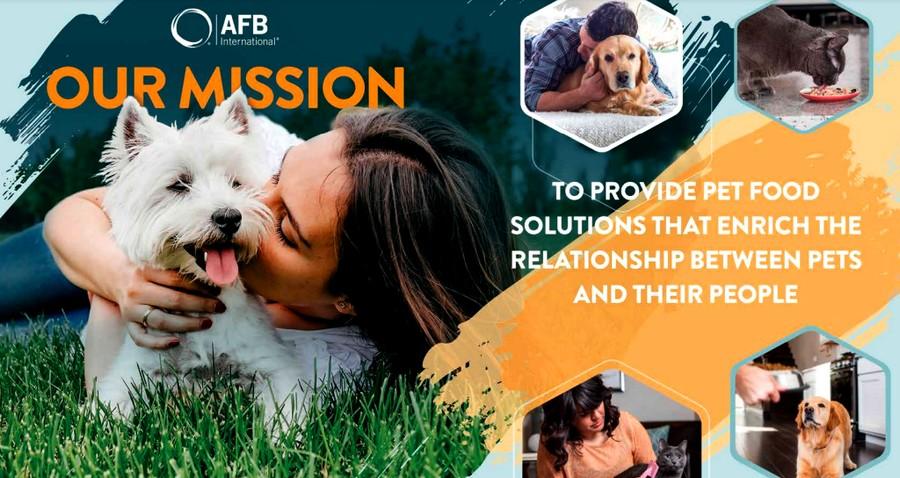 Palatants
Palatants
3+ MIN
05/08/2022
AFB International to Create More than 100 New Jobs in Columbus
"Since taking office, I have been laser-focused on bringing opportunities to every corner of our state, and I am excited that a great company like AFB is answering that call and investing in the Columbus community," said Governor Kemp. "Near Fort Benning, AFB will find a highly capable workforce ready to meet their needs. I look forward to seeing this project's impact, including its impact on the many military and veteran residents who could fill these quality positions." AFB develops, manufactures, and sells palatant ingredients to pet food companies worldwide. Palatants are ingredients that make pet foods, treats, and supplements taste great, ensuring pets enjoy their feeding occasions and get the vital nutrients they need. "AFB is excited to become part of the Columbus community," said AFB International President Jared Lozo. "We are proud of the work we've done since 1986 to make pet food taste great, and pleased to continue our growth with the talented workforce in the Columbus region. For AFB, this plant is key to fulfilling our commitment to be the most responsive and reliable supplier of pet food palatant solutions in the world." AFB's new facility will be located at the Muscogee Technology Park, a Georgia Ready for Accelerated Development (GRAD) Certified site in Muscogee County. Operations are expected to begin in 2024. The company will be hiring for management, engineering, operations, and administrative support positions. Interested individuals can learn more at //afbinternational.com/careers. "As a global science and technology leader, AFB will be a great partner for our community," said Heath Schondelmayer, Chairman of the Development Authority of Columbus. "We are extremely excited about this announcement today because growing Columbus and creating jobs for this community is our top priority. Our local economic development team and our State of Georgia partners came together to turn this opportunity into a win, and we're confident that our top-notch quality of life and talented workforce will ultimately set up AFB to achieve business success for many years to come." Project Manager John Soper represented the Georgia Department of Economic Development's (GDEcD) Global Commerce team on this competitive project in partnership with the Greater Columbus Chamber of Commerce, Georgia Power, and Georgia Quick Start. For more than 50 years, Quick Start, provided through the Technical College System of Georgia, has helped assess workers, train new employees on unique processes on projects, and develop customized job-specific training using the most current techniques and media. "AFB perfectly aligns with Georgia's spirit of collaboration and innovation, and we are excited for the jobs and opportunities their new facility will create for local communities," said GDEcD Commissioner Pat Wilson. "Urgency of customer demand has been a key challenge for many companies in the last year. We are grateful for our partners in Columbus for investing in speed-to-market solutions like the GRAD program, and we look forward to AFB's future success in Georgia!" In order to earn a GRAD program certification, a property must undergo due diligence and complete specific certification requirements before a prospective business visit. Completing the GRAD certification program with GDEcD is a proactive way for both community planners and landowners to help catalyze economic growth and industrial development for the regions they serve. Through this program, Georgia has more than 60 industrial certified sites ready for fast-track industrial projects. About Applied Food Biotechnology For over 30 years, AFB International has been providing pet food solutions that enrich the lives of pets and their people. The company's palatants are specially designed to make pet foods, treats and supplements taste better, ensuring pets receive the vital nutrients they need. Headquartered in St. Charles, Missouri, USA, AFB has offices and production facilities strategically positioned around the globe in the United States, Argentina, Brazil, Mexico, the Netherlands, China, and Australia. AFB is a wholly owned subsidiary of Ensign-Bickford Industries, Inc., a privately-held, family-owned, professionally managed technical business that traces its roots back more than 175 years Source: AFB International by All Pet Food
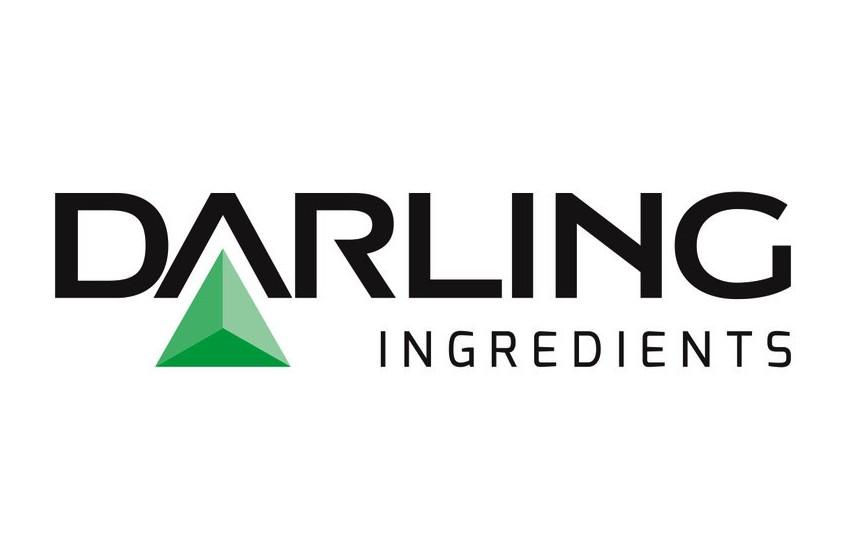 Minerals
Minerals
1+ MIN
04/08/2022
Darling Ingredients Inc. Completes Acquisition of Brazil's Largest Independent Rendering Company, FASA Group
The company first announced the acquisition in May 2022 for a purchase price of approximately R$2.8 billion Brazilian Real in cash ($542.6 million USD at today's exchange rate), plus or minus various closing adjustments and a contingent payment based on future earnings growth. As part of the transaction, Darling Ingredients has acquired 14 plants that process more than 1.3 million metric tons annually, with an additional two plants under construction.
"Brazil will play a big role in feeding a growing world population, which makes it a premier location to grow our specialty ingredients business," Randall C. Stuewe, Chairman and Chief Executive Officer, Darling Ingredients. "FASA is a well-run business, will be immediately accretive and further de-risks the supply chain by providing an additional source of non-food based, low-carbon waste fats to be used in the production of renewable diesel and sustainable aviation fuel."
About Darling
Darling Ingredients Inc. (NYSE: DAR) is the largest publicly traded company turning edible by-products and food waste into sustainable products and a leading producer of renewable energy. Recognized as a sustainability leader, the company operates 250 plants in 17 countries and repurposes nearly 15% of the world's meat industry waste streams into value-added products, such as green energy, renewable diesel, collagen, fertilizer, animal proteins and meals and pet food ingredients. To learn more, visit darlingii.com. Follow us on LinkedIn.
Contact: Suann Guthrie
VP, Investor Relations, Sustainability & Communications
(469) 214-8202, [email protected]
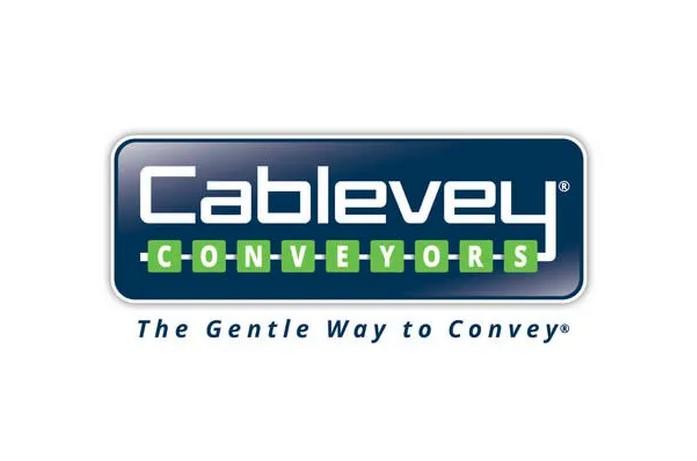 Conveying Systems
Conveying Systems
1+ MIN
02/08/2022
Cablevey® Conveyors Announces New Logo and Website
Celebrating 50 Years of Serving Its Customers For the past 50 years, Cablevey Conveyors has been moving leading brands forward with best-in-class conveyor technologies. This moment is a celebration of the past and a promise to the future as it looks forward to the next generation of technology, and the people who will guide it. "Cablevey has much to celebrate about its first 50 years with many notable achievements," said Brad Sterner, CEO. "The company has created groundbreaking conveying technology, installed tens of thousands of systems in 66 countries around the world, and created a great company for our employees and community in Oskaloosa to be proud of." "As we prepare for the next 50 years, it's the perfect time to launch our new brand, new website, and a new commitment to build on the successes we've had together in creating systems known for product integrity, energy efficiency and low total cost of ownership," he said. About Cablevey® Conveyors Cablevey Conveyors is a global specialty conveyor manufacturer that designs, engineers, assembles, and services tubular drag cable and disc conveyor systems. With customers in over 65 countries, the company specializes in moving materials for food/beverage and industrial powder processors that seek food-grade conveying performance with clean, fast, energy-efficient, and cost-effective systems. Learn more at www.cablevey.com Source: BusinessWire by All Pet Food
 Extrusion
Extrusion
3+ MIN
01/08/2022
Lifland- Iceland’s top feed factory rises from the sea
Tailoring the design When Thorir Haraldsson decided to modernize his operation, he knew he needed an engineering partner he could trust. 'I contacted a number of suppliers,' explains Haraldsson, Director of the Lifland animal feed mill, 'and ANDRITZ was the only one able to come to our site to design, deliver and commission a complete process line factory from the ground up. No one else had all the capabilities I needed.' The ANDRITZ team arrived in Grundartangi, on the coast of an inlet just north of Reykjavik. Together with Haraldsson, they discussed the barley, wheat and vitamin formulations Lifland intended to use. Raw material storage, silo sizes, and cooler systems were all defined, and ANDRITZ proceeded to design a state-of-the-art feed facility, including all of the elevators, conveyor systems and ancillary equipment necessary for a fully integrated factory. The Rise of a Modern Feed Mill When the team of engineers and electricians arrived from Denmark, Lifland had constructed a new quay in Grundartangi harbor from crushed lava stones, and less than a year later, in October 2010, the completed plant was inaugurated with a celebration of 400 visitors, including several government ministers. Together, Lifland and ANDRITZ built Iceland's largest feed mill, capable of producing 12 tons of feed per hour. With the help of training and commissioning assistance from ANDRITZ, Lifland's technicians were soon producing at full capacity. An advanced double cooler system made it possible to change recipes in minutes -a significant advantage for processing a broad range of feed products for Icelandic horses, cows, sheep, pigs, broilers, and layers. By the end of the first year, Lifland had produced a full 24,000 tons of feed. Fortunately, Haraldsson had the foresight to request a facility with sufficient space to expand, and in 2015 an additional process line was designed and installed. Other fine-tuning and upgrades were done simultaneously on the first line, which had been operating around the clock, five days a week. 'This meant that any maintenance work had to be completed on the weekends,' says Haraldsson. 'With the second line, we can now produce almost twice the volume while working just two 16-hour shifts per week.' Thanks to the combination of high performance, low energy consumption, and rapid changeover times, the Lifland factory's products are now extremely competitive in terms of price and quality. The new line is used primarily for broiler and layer feed, while the first line continues to change recipes for additional products including, most recently, cattle feed. 'I'm very pleased with how this partnership worked out,' concludes Haraldsson. 'When I first stood here and pointed to where I planned to build, the ANDRITZ staff looked at me and said, 'But it's just the sea! Where is the land?' Here we are today in that same spot, producing 40,000 high-quality tons per year in the middle of a fast-growing new seaport. It's a very exciting time.' Source: ANDRITZ All Pet Food
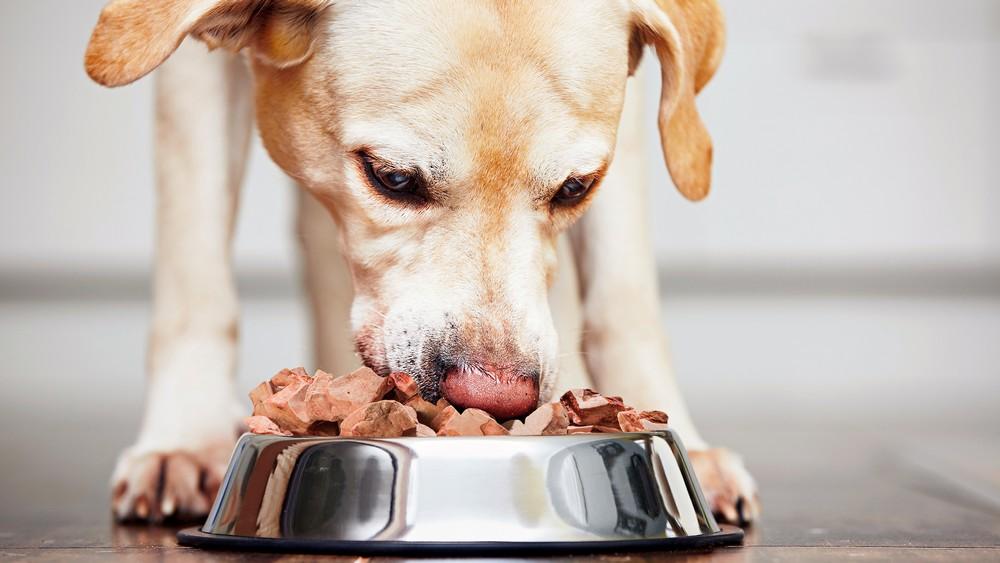 Drying
Drying
3+ MIN
29/07/2022
Frezze Drying Solutions for Pet Food
All pet owners want the best for their family friends, and rising affluence in many parts of the world has fueled the popularity of freeze-dried food for dogs and cats as a premium product. This has been particularly apparent for raw food which is increasingly seen as a healthier alternative to cooked products, retaining its natural nutrition, with lower salt and without additives.
Dried pet food has enjoyed great popularity for many years, however, freeze drying is increasingly seen as a viable option for the premium market. Freeze drying removes almost all the moisture from the product under extreme vacuum conditions (down to as low as 3-5%). This significantly increases the shelf life and allows drying at a very low temperature when compared with other dried food allowing manufacturers to create new products that can be stored unopened, at room temperature, for years, without spoiling. As the product is exposed only to low temperatures, freeze drying retains more of the nutritional characteristics of the food, for a healthier product.
Freeze-dried raw pet food
Raw meat pet food (Biologically Appropriate Raw Food (BARF)) is also becoming popular. Users report many benefits from feeding their pets raw food including: improved digestion, better dental health, easier weight control, shinier coat, reduced allergies, stronger immune system and fewer behavioral issues.
Although many accept the benefits of raw feeding, the inconvenience of handling and storing raw food can put some pet owners off. Freeze-drying the food, however, provides a fast and simple alternative. The drying process does not cook or heat treat the food, so it is still raw. The product can be reconstituted simply by adding water. This makes the food much easier to handle both for retailers and consumers and is particularly useful for owners who travel with their pets. What's more, most pets enjoy the taste of freeze-dried raw food, even those who are fussy eaters.
Types of freeze-dried pet food
A wide range of dog and cat food and treats can be freeze dried. These include: raw chicken, beef, turkey, etc. (95% meat, natural or minced and formed); cooked meat; kibble; snacks – such as biscuits and mixers; and special treats including protein bars. Kibble is usually 5-15% meat with vegetables, cereals, grain and relevant vitamins and minerals.
GEA technology, pilot plant and test facilities
GEA supplies equipment and complete lines for the preparation of pet food products including cutting, mixing, emulsifying, and forming; freezing and freeze-drying; and packaging. GEA know-how helps customers develop efficient, sustainable, high-quality manufacturing systems with maximum flexibility and the minimum effect on the environment.
The RAY® Pilot plant provides extensive test facilities for manufacturers to develop new products and perfect freeze-drying processes. This allows accurate data to be gathered and important process parameters to be optimized before the process is seamlessly scaled up to industrial-level production. GEA's engineers and technicians work closely with customers throughout the testing process to help them bring new products to market quickly and profitably.
For More information visit GEA Website HERE
by All Pet food
 Market Information
Market Information
2+ MIN
28/07/2022
Spanish pet food brand strengthens presence in Mexico
Pet Markt Company, a Mexican producer and distributor of super-premium pet food, is launching Advance, a brand of Spanish company Grupo Affinity. Affinity is among the largest pet food companies in the world, while Advance is well-known as a prescription pet food brand intended for dogs with dermatological ailments. A leader in nearly 70 markets worldwide, Advance is manufactured in Spain and comprises several prescription pet food products and a few maintenance formulations. The brand owns a research center near Barcelona to test and validate its formulations for dogs and cats, which recently published the first testing report on its dermatological products. In the trial, their product regenerated skin tissue (in a skin-artificial model), reducing the amount of cortisone required in the patient. Veterinary pet diets only In this initial launch in Mexico, Pet Markt introduced Advance's Atopic, Hypoallergenic and Sensitive Skin for dogs. As for cat food, the company introduced the Advance Renal variety. Advance products are available solely at veterinary clinics in Mexico and won't be available at other specialty pet food chains or online.Pet Markt distributes its products from Mexico City to the rest of the country and has same-day deliveries to central Mexico. Pet food launch complemented by e-learning program According to a media release, to support the launch in Mexico and provide knowledge and awareness, Advance (through Pet Markt) is offering its e-learning program, Vets & Clinics, directed to the veterinary community, free of charge. This hub of online resources includes webinars, clinical cases, papers, podcasts on Spotify, diagnostic posters and other relevant information for veterinarians. In addition, the platform offers an e-learning program with monthly tuition, where doctors can pursue diplomas in different areas, from managing a veterinary clinic to workshops for specific diseases. Plus, Pet Markt, the operator of Vets & Clinics in Mexico, offers 100% scholarships for Vets & Clinics-Advance customers. by Iván Franco
 Market Information
Market Information
2+ MIN
27/07/2022
Northwind Celebrates 25 Years !
The celebration kicked off at 5pm with NorthWind employees, their families and guests enjoying outdoor games and activities for all ages. Before dinner Mike and Marlene said a few words and the Sabetha Chamber of Commerce had a ceremonial ribbon cutting to commemorate the 25 year milestone. The evening celebration was full of fun, friends, and family! COMPANY HISTORY 1997 NorthWind Technical Services, LLC was established by Mike and Marlene Bosworth in their home outside of Sabetha, Kansas. At that time, the company primarily offered engineering consulting services. 1999 NorthWind began offering automation system solutions and moved into a small office space in downtown Sabetha. Control panels for automation systems were constructed in the Bosworth's garage at their home. 2001 The company's first full time employee was hired. 2003 A new 5,000 sq. ft. office and panel shop were constructed in the Sabetha industrial Park for the growing business. 2010 NorthWind becomes CSIA certified. 2012 A major expansion added 2,600 sq. ft. of space that included a test lab, lunchroom, and additional office space for a growing number of employees. 2014 NorthWind expanded for a second time, adding another 3,250 sq. ft. to the facility's panel shop and warehouse area. 2017 A third expansion of approximately 10,000 sq. Ft. provides additional space for control panel fabrication and personnel. 2019 NorthWind opens the Latin America Office located in San Jose Costa Rica. NorthWind is also recognized as System Integrator of the Year by Control Engineering Magazine. 2021 NorthWind opens an office in Kansas City. NORTHWIND TODAY Our headquarters is located in Sabetha, KS. The majority of employees and all panel fabrication activities are located at this facility. A second location was established in San Jose, Costa Rica in June of 2019 to better serve customers in Latin America. The Costa Rica office houses twelve employees that work in Service, Sales, and R&D. A third office in Kansas City opened in 2021 housing a small group of employees who live in the KC area. NorthWind strives to achieve high standards that meet customer needs, promote employee wellbeing and development and to ensure company stability. The company has been Control Systems Integrators Association (CSIA) certified since 2010 and consistently employs CSIA Best Practices and Benchmarks to provide the best value to its customers, combining technical proficiency with sound business practices. NorthWind is also an accomplished Rockwell Automation Gold Partner, providing proven services and solutions that meet our customers' automation needs. by All Pet food
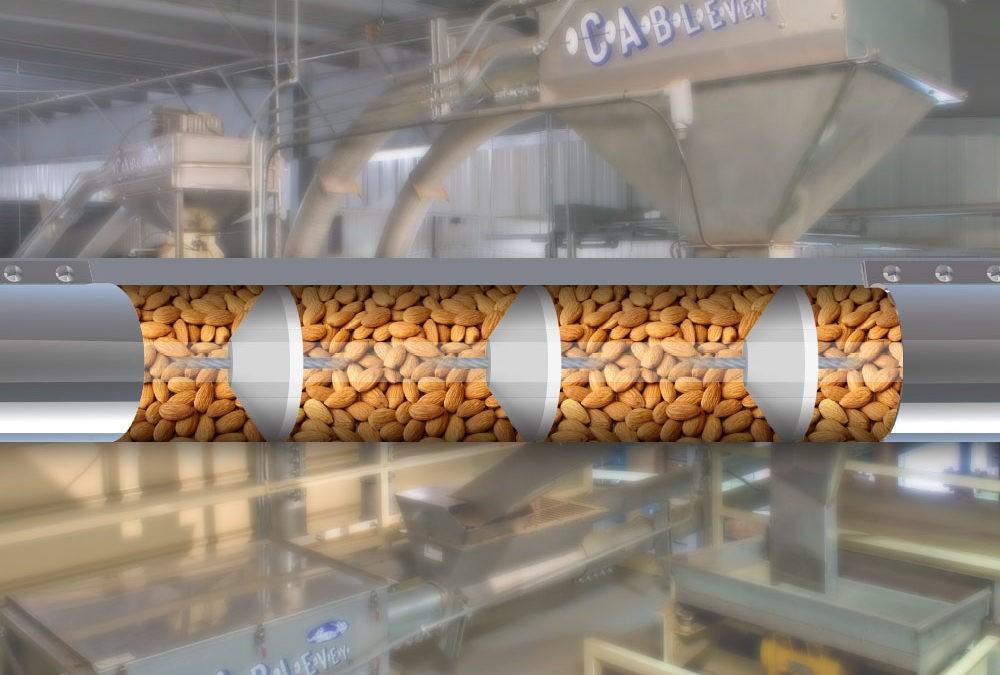 Conveying Systems
Conveying Systems
6+ MIN
26/07/2022
Pet Food Processors: Tubular Drag Conveyors Double the Volume
Pet food processors have long sought a safer, more energy-efficient means to convey product with less spillage, breakage, or downtime due to necessary cleaning and maintenance. Although tubular drag conveyors have offered these desired attributes compared to belt, bucket, or pneumatic systems, many in the industry selected these traditional options to move higher volumes or larger-sized products.
Now, however, 8' diameter tubular drag conveyors have become widely available that essentially double the volumes of smaller 6' units. This provides comparable volumes and pricing to conventional industrial systems and enables the transport of much larger product sizes than previously possible.
Tubular drag cable conveyors gently move product through a sealed tube using a coated, flexible stainless-steel drag cable pulled through on a loop. Solid circular discs (flights) are attached to the cable, which push the product through the tube without the use of air. These conveyors excel in transporting delicate, precise blends for a wide variety of food types in versatile layouts and configurations.
'Today, 8' tubular drag cable conveyors can move up to 2,000 Ft³ and 80,000 pounds per hour depending on the bulk density of materials. The units can transport product as large as whole potatoes and midsized grapefruit, and are increasingly used to convey pet food, cereal, nuts, and whole fruit,' says Clint Hudson, Engineering Manager at Cablevey Conveyors, a mechanical conveyor manufacturer that serves the pet food, specialty food, coffee, nut, powder, and produce markets.
Optimizing Food Processing
According to Bob Owen, Director of Product Performance at Cablevey, the primary reasons why industry professionals are turning to the higher volume tubular drag cable conveyors include improved power use, safety, product preservation, product quality, and production uptime.
1. Power Consumption
As energy prices continue to rise, pet food processors are paying more attention to reducing the power required to convey materials. Within plants, the motors needed to convey large volumes of food materials can vary greatly in power consumption. At the high end are pneumatic conveyors that utilize air to move product at high velocity through an enclosed line by creating air pressure above or below the atmospheric level. High-volume pneumatic conveyors generally require larger, power-hungry motors up to 20-50 HP or more that run fans, blowers, and rotary valves.
At the mid-range of power consumption are belt conveyors and bucket elevators. In a typical conveyor belt system, a belt forms a closed loop and stretches across two or more pulleys with a drive pulley that enables it to rotate continually. Bucket elevators move material using buckets attached to a rotating belt or chain. The buckets pick up material, move it to an endpoint, discharge material, and return to the starting point to pick up a new load. To convey a similar, high-volume amount of material, belt conveyors and bucket elevators would typically utilize approximately 25 HP motors, says Owen.
At the low end of power consumption are 8' tubular drag cable conveyors, which would usually use a 7.5 HP motor to move a comparable, voluminous amount of material.
'The drag cable pulls the solid circular discs (flights) attached to the cable at low speed through a loop, which requires less energy than conventional methods. The ample size and number of the discs on 8' units enable conveying a similar amount of material as traditional belt, bucket, or pneumatic units,' says Owen.
2. Safety
Open systems such as bucket elevators and belt conveyors are common in the pet food industry but have substantial drawbacks in terms of the potential for contamination. With either type of system, any product that is left uncovered can potentially expose it to contaminants and moisture in the surrounding environment. Open systems also allow product spillage onto the plant floor, which can present a slip and fall hazard if not promptly addressed.
Unlike open systems, closed systems like tubular drag cable conveyors and pneumatic units effectively seal off product from the outside environment and any potential contamination from that source. The enclosed nature of the systems ensures no dust escapes that could lead to an unsanitary and potentially dangerous coating of dust on the floor or process equipment. The result is a safer, cleaner, dust-free work environment and reduced risk of dust explosions if the product is in powdered form.
The enclosed systems also eliminate the inherent risk of slip and fall incidents due to product discharge onto the processing area floor.
3. Product Preservation
Enclosed conveyors prevent the product loss intrinsic to open systems such as belt or bucket utilizing units. Once food product is in the enclosed tube, it cannot fall out, and no powdered product is lost in the form of escaped dust. Preventing product loss can offer considerable benefits to the food processor's profitability with surprisingly quick ROI in some cases.
In the example of an international pet food manufacturer processing dog kibble, a bucket elevator was allowing excessive product loss due to spillage. 'When the pet food manufacturer switched to an 8' tubular drag cable conveyor, they minimized product spillage and reported a 1-year ROI for the system,' says Owen.
4. Product Quality
For product that is delicate or presents a higher value in undamaged form, preserving product integrity is important. However, the rough mechanical action of scooping/dumping product from buckets can cause incidental damage, lowering value. So can the high-velocity conveyance of pneumatic systems through vertical/horizontal tubing, turns, and sweeps, which can batter product during the process.
In contrast, tubular cable conveyors offer a gentler alternative. When the systems move product through a sealed tube using a coated, flexible stainless-steel drag cable pulled through on a loop, the solid circular discs attached to the cable push the product at low speed through the tube without the use of air, preserving product integrity and minimizing waste.
'After a cereal manufacturer turned to a high-volume tubular cable conveyor it was able to reduce product damage,' he says. The premium for processing high-value products whole and unblemished can be even greater for some products like nuts.
'One food processor that used almonds in its recipe was only able to sell its product for 40 cents a pound if the almonds were damaged. The same product sold for $4 a pound if the almonds were whole and undamaged,' says Owen. He notes that the processor chose to use a tubular cable conveyor to minimize product damage and optimize the sales price.
5. Production Uptime
To reduce production downtime, pet food processors also increasingly expect conveyor systems to be designed for easy cleaning and maintenance. In this regard, bucket elevators are particularly difficult to clean in preparation for production line changeovers. To clean them, each bucket must be time consumingly removed and cleaned inside and out to remove accumulated residue. Belt conveyors are usually cleaned with scrapers, but this can still leave product residue that must be removed with a more thorough method. If not cleaned properly, the food product conveyed must be discarded due to contamination, which equates to lost profit. Or worse, consumers could be harmed, resulting in costly recalls, damage to brand and reputation, or even potential litigation and liability.
With closed conveyors, cleaning is also a mixed bag. Pneumatic conveyors can still be relatively time consuming to clean and sanitize if any manual procedures are involved. With regard to maintaining cleanliness, tubular drag cable conveyor systems generally offer more options for dry and wet tube conveyor cleaning. These include brush boxes, urethane wipers, air knives, inline sponges, inline bristle brushes, and multi-step, essentially automated Clean-In-Place (CIP) wet cleaning.
'Using more automated forms of cleaning like inline wipers, sponges, and air knives or CIP wet cleaning can result in hours of additional production uptime after every product change, compared to conventional manual methods,' says Owen.
Pet food processors are generally more familiar with traditional belt, bucket, or pneumatic systems than with tubular drag cable conveyor systems. Previously, processors had selected these familiar systems when they required higher capacity. Today, however, 8' tubular drag cable units can basically match the high-volume output of the traditional systems but with significant advantages in power consumption, safety, product preservation/quality, and production uptime.
For more info visit https://cablevey.com
By Del Williams - Technical writer based in Torrance, California.
Source: All Pet Food
 Packaging
Packaging
3+ MIN
25/07/2022
Premier Tech invests $33M for the construction of a new facility in Montgomery
Through this major investment, Premier Tech Systems and Automation is creating its headquarters for the United States, strengthening its presence in America, and therefore reconfirms its commitment toward its customers and the American market. The construction of this 165 000-square-foot facility began early spring 2022 and will further improve the overall experience for American customers — through the design and manufacturing of innovative end-of-line packaging and palletizing solutions that help increase capacity and optimize manufacturing facilities in the nutrition, industrial, organic and agriculture market sectors. This stronger American presence will enhance the customer experience, easing project execution through proximity for on-site visits and factory acceptance tests. This bright, clean, and safe new installation will include air conditioning and a technical floor allowing equipment to be fully tested according to the actual production parameters required by customers. There will also be an innovation, research and development area as well as a training centre. This facility will serve as a customer solutions hub for the American market, as well as a spare parts distribution centre, which will accelerate the delivery of spare parts for customers in the US. The operations will start gradually as of March 2023 and the moving will be completed at thebeginning of the summer. 'The design of our new facility will allow an increase in production capacity that will sustain our future growth. It will also allow us to better serve the American market,' according to André Noreau, president and chief executive officer of Premier Tech Systems and Automation. 'Team members will have a world-class manufacturing environment and this new construction will become the cornerstone of equipment manufacturing and customer solutions in the United States.' 'We are grateful for a global company like Premier Tech who has committed to invest in Montgomery and deepen their roots with innovative end-of-line packaging and the creation of new jobs for our community,' said Montgomery Mayor Steven L. Reed. Since the launch of the modernization plan in 2020, 55 jobs have been created and 78 have been secured at the current Montgomery site — for a total of 133 production and office team members. The configuration of this new facility could foster further investments that would help double the workforce by 2028. 'We are so honored that Premier Tech has expanded since selecting Montgomery as one of their homes in 28 countries all over the world,' said Montgomery Chamber Chair Cedric Campbell. 'Partnership and teamwork are key to this kind of economic growth, and we are grateful for the impact this kind of investment will have on the entire region.' 'We are proud to welcome Premier Tech to its newest facility in Montgomery County. Its investment showcases that Montgomery is on the world stage for innovation and technology,' said County Commission Chair Doug Singleton. This construction in Montgomery aligns with Premier Tech's commitment to modernize its installations in the United States to enhance the customer experience across the country, strengthen its local footprint by creating jobs and support its growth. Another 12-million-dollar investment is underway for a manufacturing infrastructure project in Salt Lake City as part of this installation modernization initiative. by All Pet Food
 Formulation
Formulation
3+ MIN
22/07/2022
How to give your cat Wet and Dry Pet Food: The perfect combination is Mixed Feeding
Our cats walk, sleep peacefully, play on the carpet or do any other cuteness that gets thousands of likes on Instagram. Raise your hand whoever hasn't stopped for a while to look at cat reels and time has run out. They are so enigmatic, elegant, special, interested, sensitives and funny... and they have been living with us for approximately 10 thousand years. In Spain, almost 4 million domestic cats were registered in 2020, according to the European pet food industry, a figure somewhat lower than that the one of dogs, but higher than the previous year. And yet, many times we still have doubts about how to feed them so they don't get too fat or get sick, and also to make them happy. Is it better to give them only dry pet food? Only wet pet food? Both? It is a frequent question among cat parents. The answer is easy: both. This is what is called 'mixed feeding', a method that consists of combining dry and wet pet food in your cat's daily diet to obtain the maximum benefits of both formats for the well-being of your cat. Both dry and wet pet food are suitable for your cat if you choose them correctly and adapt them to their daily needs Dry food has multiple benefits, such as helping to keep teeth cleaner; convenience when dosing and keeping it; the fact that it keeps better if we leave it in the bowl all day (something useful for the cat who eats just a little during the whole day, as it would in nature), and that´s somewhat cheaper than wet food. Wet pet food is attractive to felines, which are generally very demanding with food, and it is emerging as a great option to stimulate their appetite. It´s fragrant, its texture is juicy, its flavors are delicious and varied... Cats prefer it since kittens choose food for its smell and texture and not so much for its taste. The great benefits of wet pet food are two. On one hand, it provides a lot of water, essential for a species that -due to its desert origin- tends to drink little and concentrate its urine for a long time. 'Cats are prone to urinary tract problems and wet pet food can help them prevent this type of pathology,' explains Beatriz Martínez, a veterinary expert in nutrition at Hospital Veteralia Movet. On the other hand, it is a great supplement that provides essential nutrients to our cat, especially if he is a kitty with little appetite (a classic), a senior (the soft texture will help him chew more easily) or a cat with some type of illness. And it is that the variety is the taste: by having a wide range of alternatives and textures, it´s easier to find your preferences. Truths and Myths of wet pet Food Wet cat food is more unknown than dry. There are many myths surrounding this format of feeding for kittens, which usually comes rationed in individual bags or cans with pieces of meat or minced meat in sauce, creamy pâté, fish fillets, mousse, puree, jelly or broth. For example, there is a tendency to think that wet food will make the pussycat fat, when the reality is that, due to its humidity, it is less caloric than dry food. The key to keeping your cat from gaining weight is, above all, to respect the portions and the calories that the cat needs. When choosing a wet diet for our cat, we must pay attention that it meets its nutritional needs and is adapted to its age and condition (whether it is sterilized or not, if it suffers from any disease...). It will be your veterinarian who can best detail what amount is recommended based on his age, energy and state of health. 'The ideal is to combine both diets, the dry one for better conservation and comfort and the wet one to continue stimulating its appetite with tasty textures, in addition to compensating for that possible lack of hydration, and also in special cases of disease or age of the feline' , states the veterinarian. by La Vanguardia
 Vitamins
Vitamins
8+ MIN
21/07/2022
What You Need to Know About Dog Foods Made with Crickets and Grubs
Growing awareness over the need for sustainable pet food solutions as well as concerns over pet allergies is driving an increased interest in foods made with alternative proteins including some surprising options, such as cricket proteins and grubs.
For many dog owners, sustainability is at the core of a switch to foods made with alternative protein options. For Jiminy's, a Berkeley,Calif.-based manufacturer of Cricket Crave, a kibble that combines insect protein with plant-based ingredients, the use of crickets drives a more sustainable process.
'Crickets are a swarming species so they're not too worried about personal space, and grubs are even less inhibited,' explained Anne Carlson, CEO of Jiminy's. 'That allows an insect farm to produce the maximum amount of protein for the minimal amount of water and land. It's a simple formula and it's exactly why insect protein will be forever atop the sustainable food chain. We're happy to be in this space at this moment in time. Don't forget, dogs in the USA consume 32 billion pounds of protein each year, causing enormous stresses on land and water.'
Jiminy's has also released its Good Grub line of food and treats, which are made with dried black soldier fly larvae, in an effort to continue building out and offering consumers new products—and new proteins.
'Grub protein is even more sustainable than cricket protein since the gains get larger as the insect gets smaller and needs less land and water,' Carlson said. 'The nutritional benefits of grub protein are essentially the same as cricket protein. It's prebiotic and humane, fights climate change, has all the essential amino acids and is hypoallergenic too. Considering how well the insects live, their short lifespan and the outstanding protein yield, it's almost as if insects were engineered for meat production.'
Scout and Zoe's use of black soldier fly larvae is helping the company accomplish its mission to do good for the pet, the planet and the community, said Cynthia Dunston Quirk, founder of the Anderson, Ind.-based manufacturer.
'How the black soldier fly larvae are grown and what they eat makes them very sustainable,' she explained. 'The larvae feed on fruits and vegetables that are past their prime and heading to the landfill. So, the little larvae are cleaning up the environment just by eating. The lifecycle of the larvae is three weeks from egg state to larvae, and they are voracious eaters. They grow one million percent of their body weight and utilize no additional water as they grow. All the water they need is available in the fruit and veggies consumed.'
Like cricket farming, Dunston Quirk said that black soldier fly larvae require significantly less land than cattle. 'According to the Natural Resources Conservation Service, it takes 546 acres of land to raise 300 head of cattle,' Dunston Quirk continued. 'On that same acreage, billions of black soldier fly larvae can hatch, develop and be harvested, utilizing the space above the ground as well as the ground itself. The larvae also emit less carbon and methane gas, which is good for protecting the ozone layer, and need no additional water to grow.'
While sustainability is important to many of those who try foods with alternative protein sources, potential food sensitives and allergies may have started them on the journey in the first place.
Jim Galovski, co-founder, CEO and president of Needham, Mass.-based Guardian Pet Food Co., said food sensitives and allergies prompted the company to create a vegan bar in its NOBL food line. The vegan recipe is made with peas, lentils, chickpeas, fava beans and dried yeast, all of which offer a good source of protein, according to the company.
Of course, sustainability has also been paramount. Galovski said that there's a quantity standpoint to look at. The two-ounce NOBL food bars can feed a 25-pound dog for the day. With higher digestibility, Galovski said that pets are receiving more of what they need in a lesser quantity—with less waste, too.
The Nutrition Factor - When 'Meat First' Is the Mindset
There are a number of factors that are likely to hold dog owners and even retailers back from getting onboard with foods made with alternative proteins. A big one is the 'meat first' mentality.
'The pet industry has done a great job marketing real meat first, but we've been trying to shift the conversation to it being not as much about the ingredients but the nutrients,' said Jim Galovski, co-founder, CEO and president of Needham, Mass.-based Guardian Pet Food Co. 'Still, this remains a heated topic. Should you ever want to alienate a group, just bring up religion, politics or what they feed their dog.'
Dogs are omnivores, so meat isn't as vital to their diet as it has appeared to consumers over the years, said Anne Carlson, CEO of Jiminy's, a Berkeley, Calif.-based manufacturer of pet food and treats that combine insect protein with plant-based ingredients.
'Dogs do need the 10 essential amino acids, so your dog food has to contain all of them,' she continued. 'Jiminy's insect protein has all 10 and at levels exceeding [Association of American Feed Control Officials] AAFCO standards.'
Insect meat is very high in protein and compares very favorably to traditional proteins, Carlson explained. For example, 100 grams of beef yields 22 grams of protein, while 100 grams of insect meat yields 32 grams of protein, she said. Carlson added that insect meat also doesn't create the allergy issues that dogs have developed with traditional proteins over the years.
But retailers might have to overcome their reluctance to embrace this category in order for it to truly take off, said Cynthia Dunston Quirk, founder of Scout and Zoe's, a manufacturer in Anderson, Ind. There is a sense of discomfort with bug protein that retailers themselves might feel.
'Dogs eat bugs whether the owner is feeding them to the pet intentionally or not,' she said. 'Watch any dog roam in a yard—they're foraging and finding and eating bugs. Ultimately, retailers do need to champion this as an option for more consumers to be willing to give it a try.' Carlson said that Jiminy's has been fighting the 'ick factor' since day one.
'The most effective response is to get the treat in a pet owner's hands,' Carlson continued. 'Once they see that it's a very familiar-looking and -smelling treat—[our] soft and chewy training treats also have a beef jerky scent—and learn about insect protein's unique benefits, it's game over and we have a convert.'
Denise Strong, co-owner of Pawz on Main, a pet store in Cottonwood, Ariz., said that she hasn't gotten any inquiries about alternative proteins yet—and she does think the ick factor of bugs might be hard to overcome with consumers. Strong said that she is personally waiting for more evidence to prove that bugs could be a primary source of protein in a dog's diet.
Jason Ast, owner of Just Dog People, a pet store in Garner, N.C., is also reluctant and a firm believer in carnivorous diets that are low in sugar and carbs. Whenever possible, he looks to convert dog owners to a raw diet and said he has seen it effectively address some customers' allergy concerns.
But Ast does get vegan or vegetarian pet owners who really want to feed their dogs a similar diet. He acknowledges that for many of these pet owners, raw is a challenge because the sight and smell of the food can make them incredibly uncomfortable. Ast said that no matter what approach or beliefs a retailer may have, looking down on a pet owner's food choices is never the answer. 'Personally, I do enjoy crickets and some of the other novel proteins for treats,' Ast continued.
Product Selection - What You Need to Know
Given the newness of pet food options made with alternative protein sources like crickets and grubs, the industry can expect to see more new products like these coming down the pipeline. With more alternative-protein pet diets coming into the market, retailers should remain diligent in vetting new products and select foods made with high-quality ingredients, according to industry insiders.
Anne Carlson, CEO of Berkeley, Calif.-based Jiminy's, said retailers should start with where products are coming from. If a product is North American sourced, it is a good indicator of high-quality ingredients, she added.
'Specific to insect protein, production control at insect farms is rigorous,' Carlson said. 'A cricket farm is like a warehouse, so everything is contained and can be easily overseen. The general principles associated with the breeding, rearing, and processing of insects for feed and food have been established and are available for public access.'
Insiders expressed some concern over the 'copycats' that are jumping into this space, which is why vetting new products is so important. 'Retailers should be aware of where insects are grown,' said Cynthia Dunston Quirk, founder of Scout and Zoe's, a manufacturer in Anderson, Ind. 'There are already some doing this outside of the U.S.'
Jim Galovski, co-founder, CEO and president of Needham, Mass.-based Guardian Pet Food Co., said that retailers and consumers alike need to demand transparency from manufacturers.
'It's so important to ask for a digestibility study,' he said. 'If the company says they don't do them, you really should look for another company. A digestibility study is measuring the bioavailability of nutrients in the food—it's almost unethical not to do that for dog parents who are going to be putting their trust and faith into a food.' Galovski said that retailers should also demand transparency in terms of sourcing as well as processes.
Ultimately, Galovski said he would like to see more acceptance as the industry moves into the future. 'It's important that retailers and pet parents give some of these new options a chance, assuming they've done their due diligence on them,' he said. 'It's time to encourage some innovation within the category. Whether it's some of the new alternative protein sources or alternative food formats, there is definitely room to grow.'
by Pet Products News
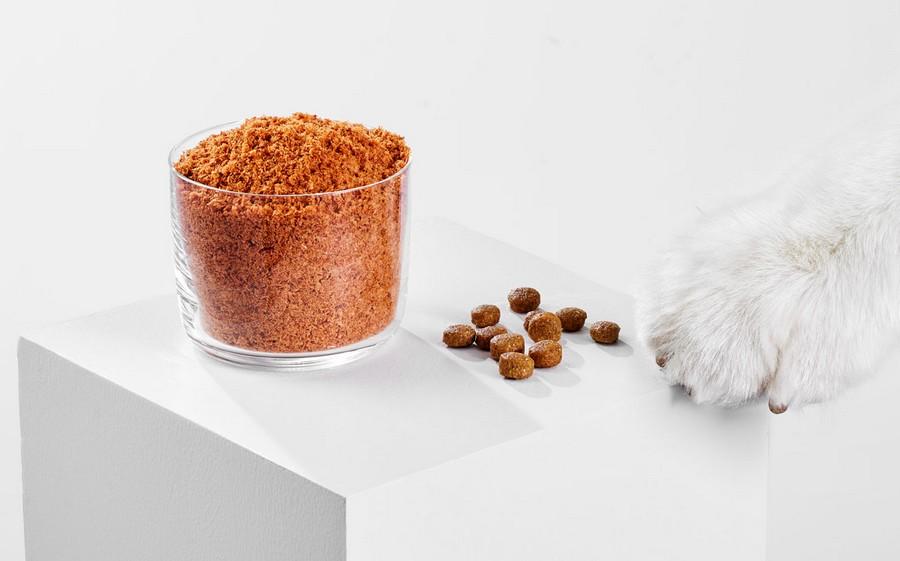 Formulation
Formulation
3+ MIN
20/07/2022
What are phospholipids and why are they important for your pets?
And there's more to phospholipids than being an integral part of cells, they are responsible for carrying long-chain omega-3s EPA (eicosapentaenoic acid) and DHA (docosahexaenoic acid) into your pets cell membranes. Now, these essential fatty acids in the form of EPA and DHA are more effectively incorporated into cell membranes when bound to phospholipids which is crucial to obtaining the health effects of omega-3s. Once in place in the cell membranes, the omega-3 fatty acids, EPA and DHA can support the health of many vital organs, including the heart, kidney, liver, joints, brain, eyes, skin, and coat. The importance of phospholipid omega-3s Dogs and cats can't produce these essential fatty acids by themselves, that's why they need a specific diet to get enough of these essential nutrients and live a long and healthy life. Antarctic krill is a superior source of marine omega-3s because its essential fatty acids EPA and DHA are bound to phospholipids. This means that pets can take full advantage of the health benefits associated with these essential omega-3 fatty acids. Marine omega-3s can improve the skin and coat of your pets, can reduce cardiovascular risk or ensures normal brain and vision development, among many other important health effects. Phospholipids vs triglycerides There are also other marine sources of omega-3s, like fish oil, where these fatty acids are delivered in triglyceride form. Now, this type of omega-3 has been a long-term ingredient in pet food. When pets have a diet based on triglyceride omega-3s (or fish oil), their body has to first convert these essential fatty acids into phospholipids before they can be incorporated into cell membranes. It has been shown that triglyceride omega-3s are also more likely to be used as energy or stored as fat. All this means that a smaller amount of this type of omega-3s will actually reach the cell membranes and have an effect on the health of your pet. As phospholipid omega-3s are less available as energy, they are more efficiently incorporated into cell membranes where they can make a difference in your pet's life. What are the studies saying There are multiple studies showing the benefits of a diet based on phospholipid omega-3s for dogs and cats. The difference between phospholipids and triglycerides has been investigated in a 6-week study done by Aker BioMarine. The study was done on 20 Alaskan Huskies, 10 of them receiving a daily diet based on EPA and DHA from krill meal, while the other ten received EPA and DHA from fish oil. At the end of the study, there has been a 62% increase in the Omega-3 Index in the krill meal group, with the triglyceride fish oil group having only a 21% increase. This study shows that phospholipid omega-3s from krill are more effective in raising omega-3 levels in a dog's body compared to triglyceride omega-3s from fish oil. QRILL Pet is a unique marine ingredient for pets QRILL Pet is one of the super-premium krill ingredients you can find out there. Made only from whole Antarctic krill, QRILL Pet is a functional marine ingredient that is added to pet food, treats and supplements. In addition to phospholipid omega-3s, QRILL Pet is naturally rich in the essential nutrient choline, the antioxidant astaxanthin and highly palatable marine proteins. by Aysen Korucu - Marketing Manager - Qrill Pet
 Market Information
Market Information
5+ MIN
19/07/2022
Indian Pet Food Market
The Indian pet food market is projected to register a Compound Annual Growth Rate (CAGR) of 13.5% during the forecast period (2021-2026). Like other industries, the COVID-19 pandemic has majorly impacted the pet food market in India. Due to rampant misinformation on pets' immunity and covid 19 infection, some people started abandoning their pets. This led the pet food industry to launch awareness campaigns and dispel rumors regarding pets and Covid-19. There was a huge supply and demand gap also due to panic buying of pet food among pet parents. The pet food industry has been unable to cater to the demand due to disruptions in the supply chain and poor logistic services. The concept of owning pets and taking care of them is a very urban phenomenon in India. Therefore the growth of the market is mainly dependent on the pace of urbanization. Infrastructural changes of the past two decades signal a very positive and rapid movement here. The Indian consumers' tendency to overspend on pets is slowly giving way to the feeling of "pet humanisation" and sensitisation; trends well demonstrated by the rapid rise in adoption rates. Therefore, increasing concern for pet health and nutrition is a significant driver behind the market's growth. Increasing pet humanisation Over the years, different types of pets have been considered "family", but the notion of treating pets like humans, which is termed "humanization" of pets, is presently driving the pet food industry in India. With growing income, urbanization, and increasing health awareness, pet owners are shifting to premium and natural foods that are free of genetically modified organisms, artificial colors, and flavors and aid in promoting the good health of pets. In order to utilize this situation, many companies are releasing food with high-quality proteins and vitamins, which help in maintaining healthy skin, digestive health, etc. The Making of Fresh For Paws This journey began in 2018 purely out of my love for my own pet dog -Vanilla. The search for nutritious, natural and tasty food for her led me to first experiment with recipes at home and eventually conceptualise a pet food brand due to lack of any satisfying equivalent in the market. The Pet Food space has always been dominated by the big market players and entering the same place as a small start-up was in itself a big challenge. It took a lot of research and development to come up with the recipes and final products acceptable to the market. Creating awareness was the first step in creating space in this sector as Fresh For Paws was amongst the first to introduce new technology and food in the market. Sustaining a business in a new space is not easy but the key to doing so is to keep innovating and creating awareness in the market about your brand. Continuous education of the customer is also important. The pet care and nutrition aspects have become more visible and talking points; pet parents are becoming more aware about what is right for their dogs and what is not. Following are some tips from a founder like me: Connect to the needs of the pet. Build trust amongst your clients and create awareness Keep Innovating & Researching Sustainability is a core principle Do thorough research and testing before launching new products. Competitors are collaborators. Grow the market by joining hands. Boost your customer service Stay true to your passion and purpose; you will be able to communicate your genuine and organic message to your customers. Industry drivers and growth As per industry experts, millennials make up 31% of pet owners in India, baby boomers 29%, Gen Xers make for 26% share of pet owners, and Genz and Builder generations make up the rest of the pet owner market in India. Millennial pet owners also use technology to purchase products and services for their pets. The pet industry market research also revealed that it has helped make a robust market with prominent new pet-related businesses. Keeping all these factors in mind, the pet market should keep growing in the coming years. The pet food space is one of the most prominent parts of the pet industry. According to the pet food industry analysis, pet owners in India spend about 300 USD ( Rs. 23000 approx ) per annum on pet food and treats. Online pet food sales statistics reveal that 73% of pet owners purchase food online, and about 27% purchase from pet specialty stores. As per the latest pet food industry statistics, Amazon is the leader in e-commerce sales with a 45% sales surge compared to the previous year. The growth in the market can be attributed to the numerous choices available. There are tons of choices for dogs alone, including dry food, wet food, organic, and natural dog food. Such a variety and wide choices are fuelling the dog food market growth. However, there is still room for businesses to grow in this sector, especially when as per estimates, India needs 3k tonnes of pet foods, and the current supply is not sufficient to meet the quality and demand. There is about 35 % to 40% shortage of animal food in the country. Imported pet foods are costly, and many pet owners can't afford them. Local players can take advantage here. A balanced nutritious diet is a key to pets' health, but high-quality, premium pet food is not accessible to every Indian pet owner due to lack of information and cost. Small businesses can take the lead here and address the demand-supply gap. The local players in the pet food industry can avail themselves of the opportunities like government schemes to make pet food in India and meet the demand. There is a huge scope for India-specified pet foods too. The Indian pet food industry is worth about Rs.2,500 crore. And as per industry data, out of 29 million total pet population, 24 million are dogs, and the rest are cats and others. As the humanization of pets is becoming more pronounced in the food segment, the era of dry kibble is getting over. Now, it is time for human-tested pet meals. Businesses like Fresh For Paws can enter this space and compete with personalized, fresh food options. Raw dog food is also among high-growth niches - mirroring human food trends will be another profitable approach but it needs more research and trials. by Srishti Bhatia
 Market Information
Market Information
3+ MIN
15/07/2022
FEDIAF’s Statement on Supply Shortages and Inflation
To add to the immediate humanitarian crisis, supply chain disruptions amidst an adverse inflationary environment continue to present the pet food industry with unprecedented challenges. Given the volatile context, FEDIAF and its member companies, in collaboration with respective public authorities and partners, have been working hard to ensure the continuity of pet food supply and mitigate challenges to avoid disruptions as much as possible. Raw materials availability Russia and Ukraine are key global suppliers for several raw materials crucial for pet food formulations and production. Russia is the world's top exporter of many fertilizers and 80% of global sunflower oil exports originate from Ukraine or Russia. Given the highly volatile context, the pet food industry is currently impacted by the limited availability of these key raw materials as well as animal protein shortages. Thus, many manufacturers may need to switch to alternative oils and ingredients. One particular challenge relates to the fact that the category of complete feeds, which make up the majority of the animal feeds produced, have to be formulated according to legal requirements in such a way to ensure all the requirements for a healthy and balanced diet for the pets. Ingredients often cannot be replaced in the formulations depending on their availability. Thus, to ensure continued food supply, pet food manufacturers have been taking appropriate measures to adjust their sourcing practices, occasionally embracing increased prices of raw materials in a low supply environment. International logistics and supply chains Due to the knock-on effects of the global pandemic, complex logistics challenges were already present. With the help of governments, authorities and other stakeholders our industry has navigated these challenges and continued supplying food for pets around Europe. The war has caused additional disruption to international logistics and continues to impact supply chains. Ocean shipping in the Black Sea, air-freight availability and regular shipments via existing trade lanes have become increasingly challenging. All these factors have led to a complex operating environment for pet food companies. Inflation and energy supply With the onset of the war in Ukraine, energy prices, as well as the cost of commodities, have soared worldwide with impacts already seen across major industries, leading to adverse inflationary pressures on the majority of input factors. In the face of any potential energy disruptions, our industry would be severely hampered as pet food manufacturing requires a high amount of energy for the production process. Relevant savings or a switch to alternative energy as a means to compensate for any potential energy shortages are not immediately available options for manufacturers as they require long-term planning and investment. Pet food manufacturers are taking appropriate measures to ensure supply continuity FEDIAF members are working hard to ensure the continuity of supply for pet owners and their pets. At FEDIAF, our actions are grounded in the conviction that pets are an essential part of our society: they provide invaluable support through facilitating human interaction, increasing social connections, and providing companionship. Scientific evidence continues to demonstrate the many benefits pets can bring, not only to their owners but also to our society as a whole. This is even more important and true in the current difficult times we are experiencing, and this is the inspiration behind all our efforts as pet food manufacturers. Source: FEDIAF European Pet Food
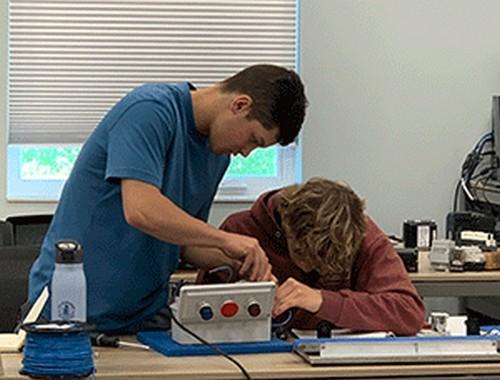 Laboratory
Laboratory
1+ MIN
14/07/2022
2022 Intro to Automation Course
May 31 – June 3. Professor Clark Shaver from the Electronics Engineering Technology Department at Pittsburg State University presented the course to twelve students. While one-half of the students were from Sabetha, students from surrounding communities including Fairview, Seneca, Wetmore, Horton, Centralia and Humbolt, NE made up the other half. The students learned basic programmable logic controller (PLC) programming and controls wiring to complete approximately 25 projects that included buzzers, strobe lights, and conveyor systems. Automation industry experts from NorthWind and other companies shared information on career paths in the rapidly expanding field of automation throughout the world as well as in our local area. Students were presented with a Certificate of Completion and have the opportunity for scholarships and course credit if they pursue an engineering degree with an automation minor at Pittsburg State University. The owners of NorthWind, Mike and Marlene Bosworth commented, 'We enjoyed hosting the course and giving these young individuals a small taste of the automation industry. We are hopeful that we can host this course again next year.' by All Pet Food
 Market Information
Market Information
2+ MIN
13/07/2022
Symrise completes acquisition of Chinese manufacturer Wing Pet Food
According to the company, Wing Pet Food has established itself as a Chinese leader in pet food palatability enhancers and a supplier of pet food nutrition and pet food protection ingredients. 'Joining forces with Wing Pet Food will open tremendous opportunities in the region,' observed Alain Symoens, APAC General Manager for Symrise Pet Food. Symrise Pet Foods, a division formed earlier in the year as a result of the fusion of Diana Pet Food, ADF, IsoNova and Schaffelaarbos, expects to provide pet food manufacturers with a wider range of products to support their positioning across China and adjacent markets. 'This acquisition will further strengthen our market position in the areas of pet food palatability. At the same time, it will accelerate our diversification in the areas of nutrition and food protection. Customers will definitely benefit from the enhanced value proposition we will jointly offer,' commented Jean-Yves Parisot, President Taste, Nutrition & Health at Symrise AG. Integration It now begins a process of 'smooth integration' with the 200 employees that Wing Pet Food has in its R&D center in Shanghai and two production sites in the provinces of Jiangxi and Jiangsu. Formerly known as Wing Biotech when first created in 2007, Wing Pet Food is an R&D-oriented company focused on developing and providing pet food palatability solutions. Over the years, it has grown into a high-tech firm with two business units, Wing Bio and Witts Bio, focusing on pet food palatability and health & nutrition respectively. Wing Pet Food serves both local and overseas customers across Asia, Oceania, Africa and the Middle East. By: Symrise Pet Food
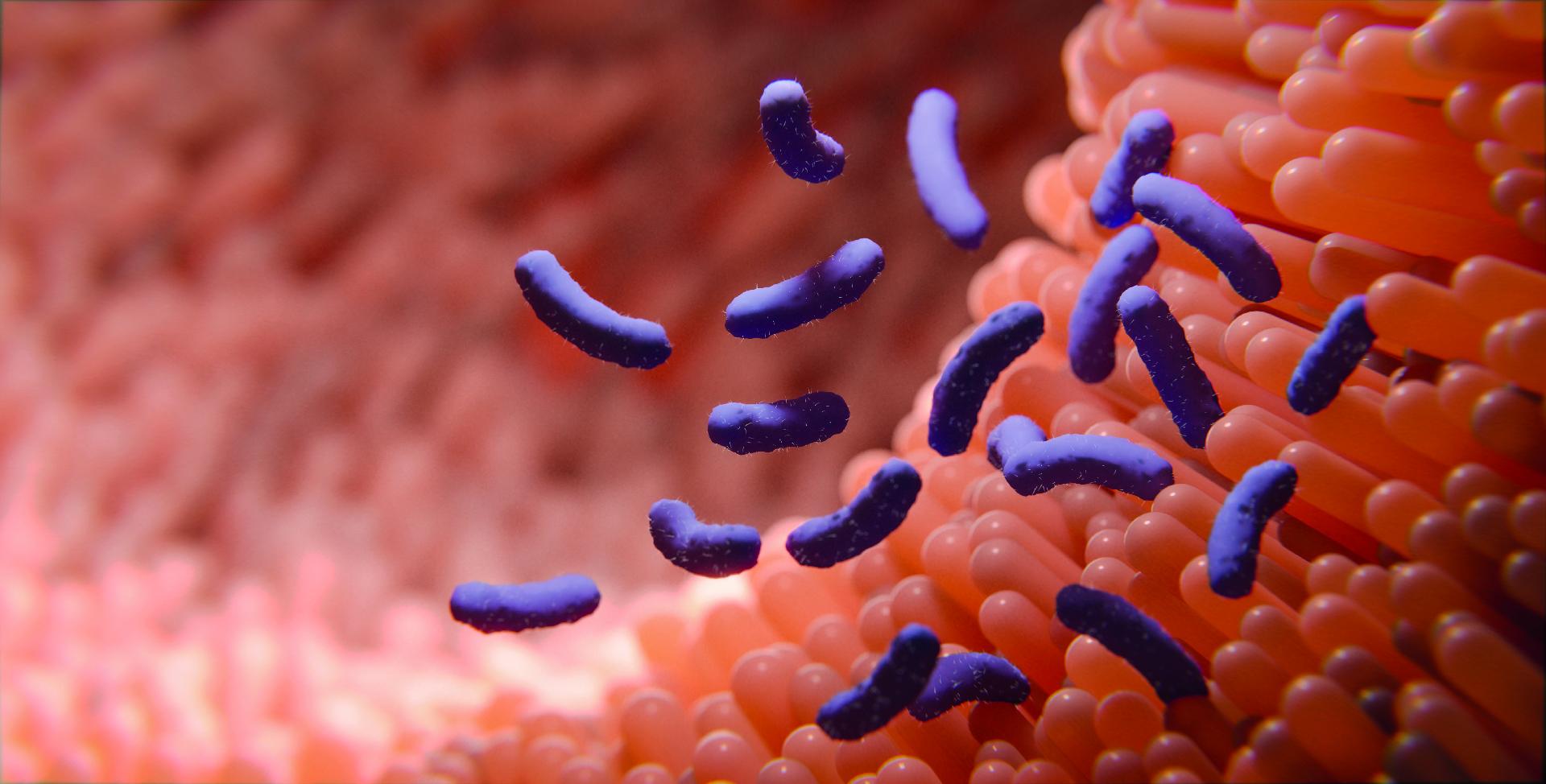 Trends
Trends
5+ MIN
13/07/2022
Por Erika Stasieniuk
Diet modulation in adverse reactions in dogs and cats
The intestinal epithelium acts as a physical and immune barrier, preventing the content present in the intestinal lumen from diffusing to other tissues and organs and compromising their homeostasis. Adverse food reactions are abnormal responses to an ingested food and can be divided into 2 main groups: 1) Food intolerance or intoxication, reaction without the involvement of the immune system; 2) Food hypersensitivity or allergy, immune-based food reaction; When the adverse reaction does not involve the immune system, the terms intolerance and food poisoning can be used, related to metabolic, idiosyncratic, pharmacological reactions and ingestion of toxins present in some food. Food poisoning results from the direct action of a food or food additive. Examples include excessive nutrient intake (vitamin A or D intoxication, selenium), food contaminated with microorganisms or their toxic metabolites (decaying material, mycotoxins), specific foods (onions, chocolates), or food preservatives (benzoic acid or propylene glycol in cats). Gluten-induced enteropathy (celiac disease) is a major food intolerance, which causes chronic inflammation of the small intestine. "Gluten" is a crude mixture of gliadin and glutenin, and is normally well digested by pancreatic enzymes in the intestinal lumen, and intracellular enzymes in the brush border of the mucosa. Familial gluten-sensitive enteropathy has been described in Irish setters. However, this sensitivity can affect a larger number of breeds of dogs and cats. In this breed, this pathology can be observed between four and seven months of age as an inability to gain weight accompanied by chronic diarrhea (Garden et al., 2000). Food hypersensitivity or, more simply, food allergy, is included in the differential diagnosis of dogs and cats affected by clinical manifestations associated with skin diseases. It represents an immune-based adverse reaction to food as well as food anaphylaxis. Despite the relatively low prevalence of food hypersensitivity in small animals (compared to other allergies such as atopic dermatitis and flea allergy dermatitis), many animals have a multifactorial etiology, which means they are allergic to flea saliva, flea food, and dust mites at the same time. Thus, in supposedly allergic animals, it is essential to determine whether or not the food participates in the clinical picture. Food allergies usually occur as non-seasonal itchy dermatitis, with or without gastrointestinal signs. Pruritus varies in severity, and the distribution of the lesion is often indistinguishable from that seen in atopic dermatitis triggered by environmental allergens. The feet, face, armpits, perineal region, groin region, and ears are often affected. It should always be suspected in dogs with pruritic otitis (external unilateral or bilateral), accompanied by secondary bacterial or fungal infections. Generally, the main food allergens are water-soluble glycoproteins, which have a molecular weight ranging from 10 to 70 kD (thousand daltons) and are stable to heat, acid, and protease treatment. Meat, dairy, and wheat are the ingredients that most commonly cause adverse food reactions in dogs. Specific food allergens identified in dogs include chicken serum albumin, bovine IgG (milk and beef), sheep IgG (lamb), muscle phosphoglucomutase (beef, lamb), and Gly 50 and 75 kD soy proteins. Meat, soy, rice, dairy products, and fish are the ingredients that most commonly cause adverse food reactions in cats. Elimination challenge tests confirm the diagnosis of an adverse reaction to a specific food. Resolution of clinical signs occurs after food elimination is present in the patient's diet, followed by a signal return when the patient faces the original food. How to adjust the diet for adverse reactions to food? Theoretically, the treatment would eliminate the agent causing the adverse reaction from the animal's diet. This option is more feasible when we talk about adverse reactions that do not involve the immune system since it is easy to identify which ingredient or food is causing the direct reaction of intolerance or intoxication to the organism. Food allergy is an immune reaction to proteins ingested in the diet that are mistakenly identified by the body as antigens, generating an immune response that involves GALT (gut-associated lymphoid tissue). As protein is an essential macronutrient for dogs and cats and we cannot eliminate it from their diets, our strategy in pet food is to include protein sources in quantity and quality, which will be key factors in the management of adverse food reactions in dogs and cats. Thus, the protein/energy ratio in hypoallergenic diets is a parameter of great importance for the formulation since the denser the diet, the less protein the animal will ingest. It would be interesting if the hypoallergenic rations had ME equal to or greater than 4000 Kcal/kg, both for cats and dogs. However, not only the % of crude protein inclusion in hypoallergenic diets should be considered; the type of protein is a key factor to improve the immune response. Using unprecedented protein sources or synthetic amino acids is an excellent strategy since the animal has never had contact with them, and their immune system does not identify them. Some products replace beef or chicken with exotic meats for pets, such as lamb, salmon, rabbit, venison, ostrich, among others. However, the cost and availability of these proteins make it difficult to produce and market this type of food. The immune system recognizes proteins with a molecular weight greater than 5 kD; those with a lower weight are absorbed and are not identified. Currently, the most commercialized hypoallergenic foods are those formulated with hydrolyzed protein. They undergo a denaturation and fragmentation process by chemical reactions. New products with the analgesic concept are coming onto the market; in addition to hydrolyzing the protein sources, the other ingredients are, for example, protein-free; only the starch fraction of the carbohydrate sources are used to ensure that no protein is produced. They do not even have plant-based allergens. The ratio between ω6 and ω3 fatty acids in animal tissues can be modulated through diet and thus influence the inflammatory response of animal skin. To improve the performance of polyunsaturated fatty acids, there must be an optimal ratio between them. According to Reinhart et al. (1996), a ω6:ω3 ratio between 5:1 and 10:1 can significantly reduce itching conditions. Vaughn et al. (1994) determined an optimal ω6:ω3 ratio of 10:1 to 5:1 for adult dogs, while Wander et al. (1997) studying elderly dogs, found a significant decrease in prostaglandin E2 (PGE2) only with the ω6:ω3 ratio of 1.4:1. By: Gabriela S.C.P. Corte Real, Ludmila Barbi, Erika Stasieniuk Source: All Pet Food
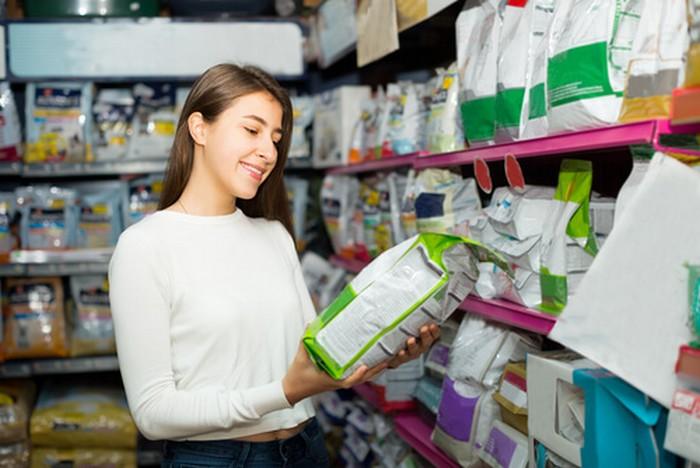 Dogs
Dogs
8+ MIN
12/07/2022
Understanding veterinary pet food claims
'The pet food landscape is indeed a very cluttered and confusing category,' said Danielle Bernal, BVSc, global veterinarian with Wellness Pet Company. 'For many pet parents, trying to determine what is the best food for their dog may come down to their own research, discussions with friends and family or even key influencers such as retail staff, veterinarians and clinic staff.'
According to a pet owner survey conducted by market research firm Packaged Facts in January 2022, most pet owners — regardless of generation — claim their veterinarian as their most important source of pet care information. The internet and social media are ranked relatively low in importance but are becoming more common sources of pet care information at the expense of veterinary advice, Packaged Facts noted.
Today's proliferated pet food shelves are teeming with functional marketing claims to compel pet owner purchases. One set of claims standing out in this category is 'veterinarian formulated,' 'veterinarian approved,' or 'veterinarian recommended.' According to Renee Streeter, DVM, DACVIM, founder of R.M. Streeter Animal Nutrition Consulting and practice principal at BSM Partners, the seemingly subtle nuances between these claims are worth noting.
What's in a claim?
A 'veterinarian formulated' claim is perhaps the most straightforward. It indicates that a veterinarian played a role in formulating the diet, 'meaning they took into account the nutrients provided by each ingredient in their various amounts within the diet to ensure nutrient requirements and nutritional goals were met,' Streeter said.
Slightly less forthcoming, a 'veterinarian recommended' claim means a significant number of veterinarians have recommended the product. This claim must be backed by a survey of veterinarians, guidelines for which have been stated by the Association of American Feed Control Officials (AAFCO).
'What is key to note here is that in some states, claims around veterinarian-backed or veterinarian-recommended will require robust proof of the claim to support that it meets regulations,' Bernal said. 'This can include what veterinarians are supporting this claim, whether or not it is a national distribution from the United States, whether a sufficient number of veterinarians were surveyed, and whether a certain percentage of those asked supported the claim.'
According to AAFCO, the onus is on the brand to conduct a statistically sound survey of veterinarians to back up a veterinarian recommended claim. Surveying one or two veterinarians is not enough, the organization advised, and some companies have included up to 300 veterinary professionals in a survey to support this claim. State officials may ask for supporting data to substantiate this claim, so brands would be wise to do their research before taking it to market.
'It should be pointed out that while this requires a survey of a statistically sound number of veterinarians who recommend your product, it only takes one veterinarian to support the claim 'veterinarian formulated' or 'veterinarian developed,' assuming that fact can be sufficiently documented,' said Laura Robinson, DVM, consulting veterinarian at Canidae Pet Food.
Bernal added that getting approval for a veterinarian-recommended claim can depend on local or state-by-state regulatory guidelines.
'A company thinking of pursuing this claim needs to ensure that they have sufficient legal and regulatory support prior to use,' she said. In the grey area is the 'veterinarian-reviewed' claim, which Streeter described as meaning the formula was not developed by a veterinarian, but veterinary professionals reviewed the formulation and submitted recommendations to the brand.
'This does not always mean the recommendations were followed, but it does mean they were given and that all AAFCO nutrient requirements have been met,' she said.
The claim 'veterinarian approved' should not be used, Streeter advised, as it is deemed inappropriate by AAFCO. If certain criteria are met, brands may use 'veterinarian recommended,' 'veterinarian formulated' or 'veterinarian developed,' but 'veterinarian approved' is off the table — full stop.
The most important consideration with these claims is that they convey a clear meaning to the consumer and aren't intended to be misleading. Streeter noted Board-Certified Veterinary Nutritionists are in a unique position to add creditable value to a product's efficacy.
'I think it is important to distinguish between 'veterinarian formulated' and 'formulated by a Board-Certified Veterinary Nutritionist' claims,' Streeter shared. 'Board-Certified Veterinary Nutritionists have extra training and research background, which enables them to formulate diets and to especially consider health concerns while doing it.'
Robinson reiterated this sentiment and elaborated on the difference between a veterinarian and a Board-Certified Veterinary Nutritionist when it comes to formulating pet food.
'Although they may claim veterinary approval, these labels don't ensure that this approval was made by a veterinary nutritionist specifically,' Robinson explained. 'Compared to a veterinarian, a vet nutritionist is required to take extra training in nutrition and complete a residency in nutrition. While all veterinarians receive training in nutrition, a vet nutritionist is a board-certified specialist that is uniquely trained in the nutritional management of both healthy animals and those with one or more diseases.
'Additionally, just because a product may have general approvals, it doesn't mean that the product is the best choice for your particular pet, especially if the animal has any underlying health issues,' she added.
Better together
Bernal emphasized the importance of several other factors in determining a product's efficacy alongside a veterinarian-formulated, -recommended or -reviewed claim. These factors include:
Whether the product is formulated to meet AAFCO requirements for the appropriate life stage.
Whether an animal nutritionist played a role in product formulation.
Whether a product has undergone long-term feeding trials based on AAFCO guidelines.
A company's food safety and quality assurance programs.
A company's R&D efforts to understand and apply nutritional innovation to its products.
'While claims of veterinarian-formulated or veterinarian-backed pet food try to establish a superiority of nutrition and approval versus other diets, it is important to note that many other factors are more important to determine the quality of a brand of nutrition,' Bernal noted. 'Therefore, we should be encouraging pet parents to look deeper at a recipe to truly understand how well it will be supporting the health needs and the benefits they are seeking for their pet.'
In other words, a veterinarian-formulated or veterinarian-recommended claim may offer shelf appeal and help brands build trust with consumers, but it may not convey other key insights into the product's formulation, proven benefits or compliance.
'A better solution would be to help pet parents understand the details of pet food so that they can determine the health claims, ingredient declarations, guaranteed analysis and AAFCO statements on packaging,' Bernal shared. 'These elements, whilst not instantly intuitive, can tell a pet parent so much more about the quality and nutritional value of a product that they are considering feeding their pet.'
Aside from educating the consumer on key label information, vet-backed marketing claims work best when paired with other assurances, certifications or standards statements on the package.
'It is important for the consumer to understand how the products were made,' Streeter said. 'However, there are many very qualified (and sometimes more qualified) formulators who are not veterinary nutritionists or veterinarians. Unless the veterinarian is extensively trained in formulation (which can be indicated by their credentials as Board-Certified Veterinary Nutritionists), then it is best that food scientists and animal nutritionists work together with a veterinarian so that all the various aspects of creating a healthy pet food are taken into consideration.
'Veterinarians understand and see various health issues and the way they are affected by diet,' she continued. 'However, unless the veterinarian has been trained to formulate diets, they might not actually be best suited for this task. Board-Certified Veterinary Nutritionists have been trained to formulate diets and to take into account the various nutritional goals associated with health issues.'
On the shelf
With this understanding of different veterinary claims for pet food products, some brands are using them to create trust with consumers and set themselves apart on crowded shelves.
'Seeing these words on a food bag can give a pet owner reassurance in their purchase,' Robinson said. 'It means that professionals, with substantial knowledge of pet nutrition, have confirmed that this food is a good choice for most pets. The benefit is that these claims provide consumers with a level of confidence that they are choosing a better option for their pet.'
As a consulting veterinarian at Canidae Pet Food, Robinson shared all the company's products are developed in partnership with a veterinary nutritionist and reviewed by veterinary professionals to meet and exceed AAFCO standards.
Wellness Pet Company tasks its team of qualified animal nutritionists, R&D teams and veterinary consultants to evaluate its products against AAFCO standards, ensure AAFCO Feeding Trials are conducted to prove efficacy, safety and effectiveness, and support scientific studies to fuel future innovations.
'By having high quality standards implemented in our company-owned facilities, we assure consumers that our food is being formulated, tested and proven the right way to deliver only the highest quality nutrition for dogs and cats,' Bernal said.
Two other global companies have built their reputation on vet-formulated pet food: Hill's Pet Nutrition and Royal Canin. Both brands offer prescription diets sold exclusively through veterinarians, as well as commercial products backed by extensive teams of in-house veterinary professionals.
Hill's Pet Nutrition, owned by Colgate-Palmolive, has more than 220 veterinarians, food scientists, technicians and Ph.D. nutritionists on its staff, according to the company's website. The company conducts pet nutrition research through Mars' WALTHAM Centre for Pet Nutrition and its Small Paws innovation center in Topeka, Kan., which it uses to develop products based on science-backed ingredients, predictive biology and pet microbiome research.
Hill's Prescription Diet is the company's line of vet-recommended therapeutic diets addressing urinary, kidney, skin, digestive and weight management care. These diets are both veterinarian-formulated and veterinary exclusive; pet owners must obtain a recommendation from their veterinarian to purchase Prescription Diet products.
Royal Canin, owned by Mars Petcare, was actually founded by a veterinarian in 1968. The company currently employs more than 500 veterinarians on its staff and focuses on 'tailored nutrition,' or developing products that address specific health needs based on life stage, breed, medical condition, lifestyle, food sensitivity and other factors.
Royal Canin has an extensive portfolio of therapeutic diets for dogs and cats available exclusively through a vet's recommendation, ranging from weight management and health support diets to those addressing specific conditions such as renal disease in cats and cardiac health in dogs.
Whether a pet food brand is partnering with a veterinary consultant or Board-Certified Veterinary Nutritionist, has one on staff, or employs a whole team of veterinary professionals to inform the development of its products, these types of marketing claims should not be used as a silver bullet. It's important for companies to understand their consumers and, in turn, help them understand what is nutritionally best for their pets.
As transparency, efficacy and functionality climb the ranks of importance in the pet food space, marketing claims such as veterinarian-formulated, veterinarian-recommended and veterinarian-reviewed should only be used as long as the claim reflects the efficacy of the product.
Source: ©JACKF - STOCK.ADOBE.COM
 Micro Ingredients
Micro Ingredients
4+ MIN
11/07/2022
Innovation in the pet food industry
Many changes and technological innovations have developed over the years; a good example is the invention of the first prescription diet designed for dogs with kidney problems in 1939 by Mark L. Morris. It seems the change that turned the pet food industry upside down and into what we know today is the introduction to the market of the first food manufactured by extrusion worldwide in 1957. After that, there has been a great evolution and very important changes regarding: food safety, processing, and product appearance, as well as from a nutritional approach. In terms of time, food safety is perhaps one of the first points to be addressed by the industry: water activity measurement in food to prevent bacterial growth, antioxidants inclusion to prevent rancidity or agents that prevent fungi proliferation or the blocking of their toxins. The introduction to the market in the early 1990s of the use of hydrolyzed (digested), liquid or powdered animal proteins represented a substantial improvement in the acceptance of diets by pets. In the case of processing, we can mention examples immediately accepted by buyers as: new product varieties with different textures (semi-moist, moist foods) or the inclusion of fresh meat in dry foods. The pet health and care trend that took place 10 or 15 years ago is helping take important steps in improving the market offer. This is happening by applying nutritional technological improvements, intrinsic and resorting innovations from the nutrition of production animals, as well as from the food and nutrition humans. The industry is taking increasingly solid and constant steps towards a new generation of foods that guarantee pets a better quality of life for many more years. For a long time, nutrition served as the most important point in the development of pet food, as shown by the modifications made to the nutritional standards established by the National Research Council. In fact, in 1985, only minimum and maximum levels were recommended. The concept changed for 2006 when minimum, adequate, recommended and safe levels were established. Another important point is the inclusion of omega 3 fatty acids minimum recommended levels, not included in the 1985 version. Many things have been changing from a nutritional point of view. The inclusion of innovative ingredients sources that provide higher biological values of protein than existing traditional sources is something more commonly seen on food labels such as the use of plasma or from the egg. Additionally, there is an increase in the use of non-traditional concentrated vegetable protein sources such as peas, potatoes, or lentils. Of course, it is important to nutritionally assess the use of fresh proteins in the formulation of pet diets. There are serious moves toward formulating pet foods with soluble and insoluble dietary fiber values (instead of the current crude fiber values). This will improve the nutritional performance of the food and its response in dogs and cats. Another valuable and interesting point is the inclusion of additives that improve pet intestinal health (prebiotics). The use of organic minerals is becoming more and more common in the industry, and fortunately, the cost difference with inorganic sources of these nutrients is less and less, which is why it is easy to take advantage of their greater bioavailability. Some companies have dedicated resources and time to substitute antioxidants and artificial colors for natural ones; in the case of colorants, there is still much to be done in this area since the characteristics of food processing usually modify the performance of natural colorants. From a cost point of view, the differential in antioxidant costs is still high, which is why their use is limited to certain food segments. Enzyme usage to improve the availability of some nutrients is relatively limited due to their viability during the thermal processing they undergo. It is the same case for some additives that improve pet intestinal health (probiotics). Notwithstanding the foregoing ways in which their application and inclusion in food can be optimized, they are constantly evaluated. The inclusion of phytobiotics in pet nutrition is another lesson learned from the production animal feed industry. Facts have demonstrated that artificial choline substitutes have a very important space in new pet food generation. Proposals for more resistant and cheaper analogs of vitamin C have even been ventured into. There are even more complex advances in pet nutrition such as nutrigenomics, which is the science that studies how food and its nutrients interact or even modulate the genetic expression of the organism. The pet food industry is constantly evolving and innovating, which increasingly guarantees a coexistence with our best friends for more years and with better life quality. By: Miguel López
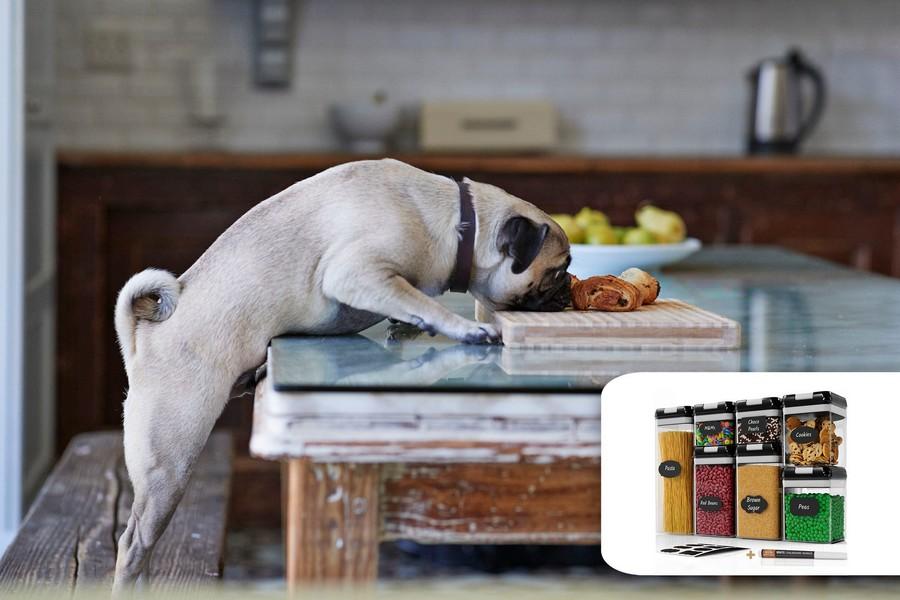 Formulation
Formulation
3+ MIN
08/07/2022
Pet Food gets a Human Makeover.
Pets are playing an increasingly large role in our lives – Nielsen data shows that the number of consumers who consider their pet a family member increased by 7% between 2007-2016, and 42% of UK pet food buyers consider their pet a 'foodie' [often defined as a gourmet; a person with a refined taste and particular interest in food] (Mintel, 2020).
According to the American Veterinary Medical Association (AVMA), 'Trends in companion animal nutrition often mirror trends in human nutrition, reflecting the desire for of pet owners to feed diets they consider healthy and beneficial for the well-being of their pets.'
Little wonder, then, that as people become more aware of their personal health and nutrition, pet-food companies are successfully appealing to them with attributes that they can understand and personally relate to, including:
Sustainability: Sustainability is becoming a key concern for Western consumers, and a well-thought-out sustainability strategy is a basic 'must-do' for every company in every corner of the food and beverage industry – now also including pet food. Words such as 'sustainably sourced' and 'grass-fed' are increasingly seen on pet-food packaging. Pet-food manufacturers have a unique opportunity to valorise by-products from human food manufacture that would otherwise be thrown away.
Provenance: There is rising demand for products made by local and smaller producers, with such products often considered more sustainable, safe, genuine and authentic. In human food and beverage, 75% of consumers consider country of origin to be as important
– and sometimes even more important – than other purchase criteria such as quality or price (Nielsen). It's no different in the pet-food world, where products that carry claims such as 'locally raised' and 'proudly made in…' abound.
Clean label and natural: Promoting pet-food products as 'all natural' or 'organic' is becoming increasingly popular – a reflection of what is happening in human nutrition, where consumers increasingly prefer natural foods made in a kitchen to over-processed products with long ingredient lists.
Plant-based: This is perhaps one of the more unexpected trends to have spread into pet nutrition (mainly dog nutrition), with dogs generally being considered strict carnivores. But 34% of UK dog food buyers believe it is good for pets to regularly have a plant-based meal instead of a meat-based one (Mintel). This belief is supported by vets and scientists, although always with the warning that pet owners must ensure their dog's diet is balanced and nutritionally adequate.
Digestive wellness: With many pets having sensitive digestive systems, the desire to care for this is a key priority for many owners. According to Mintel, 76% of cat and dog food buyers believe that actively looking after pets' digestive health is essential for their overall health and 44% buyers said they would have positive beliefs about pet-food products claiming to contain 'good bacteria'.
Personalisation: The past few years have seen a fragmentation of consumers' beliefs about what 'healthy nutrition' entails, with people making up their own minds about what is good for them and why. Personalised nutrition has grown in popularity and started to spill over into the pet nutrition market. Research has shown that nearly half (45%) of pet-food buyers would be willing to pay to have their pet's DNA tested to identify the healthiest diet for their animal friend. Some pet-food manufacturers now offer personalised meal kits, with some brands even offering to base this personalised diet on the animal's blood work.
The spread of human nutrition trends into the world of pet food is likely to continue. Pet food manufacturers need to monitor the situation and adapt accordingly. As consumers are becoming more aware of their own personal health, there is a significant opportunity for the pet food industry to capitalise on that by offering products and concepts that humans can relate to, believe in, and consider 'healthy' or 'good' enough to feed their pet.
by Julian Mellentin, New Nutrition Business
 Micro Ingredients
Micro Ingredients
4+ MIN
07/07/2022
Por Armando Enriquez de la Fuente Blanquet
Should I worry about mycotoxins?
Mycotoxins (from the ancient Greek mýkes 'fungus' and the Latin 'toxicum' referring to poison) are toxic secondary metabolites of varied composition. They come from organisms of the fungi kingdom, which includes mushrooms, molds, and yeasts. According to the World Health Organization, mycotoxins are toxic compounds produced naturally by some types of fungi or molds. Mycotoxin-producing fungi grow on many foods, such as cereals, dried fruits, nuts, and spices. Its growth can occur before or after harvest, during storage, or in the food itself in warm and humid environments. Most mycotoxins are chemically stable and persist after food processing, which means that the extrusion process does not eliminate the mycotoxins present in raw materials. No pet food manufacturer wants to cause a pet owner a problem from mycotoxins. However, dogs can consume mycotoxins by eating sourced contaminated food, improperly stored food, or mushroom bread during their daily walks. One of the key indicators that a dog has ingested a mycotoxin-contaminated food is liver failure, which can result from acute or chronic exposure (and this can vary by the type of mycotoxin and by the concentration and frequency of exposure to her). Other common signs include vomiting and loss of appetite, weight loss, lethargy, diarrhea, a weak immune system, breathing problems, tremors, heart palpitations, or jaundice. The responsibility of the pet food manufacturer is big enough because, in addition to producing food that provides the necessary nutrients, it must be mycotoxins-free. The FDA regulates aflatoxin levels in feed ingredients; the current regulated limit for companion animals (dogs, cats, rabbits, etc.) is 20 ppb (parts per billion) for total Aflatoxins. The growth of fungi and the production of their toxins can occur due to improper storage of grains and other ingredients used in the pet food manufacturing process. On this occasion, I will be talking about raw materials, without detracting from the importance of proper manufacturing, handling, and proper balanced food storage. Fungi generally do not grow on properly dried and stored grains. That is why an efficient drying of commodities and dryness maintenance or proper storage are effective measures against fungal growth and mycotoxin production. However, harvest conditions or the source of raw materials can also vary significantly from year to year. Therefore, the solution to solve this situation is to have a complete quality control system for raw materials and a good program of efficient storage practices. According to Dr. Swamy Haladi, Global Mycotoxin Management Program Manager at Trouw Nutrition, more than 80% of agricultural production contains mycotoxins contamination. To this day, more than 500 mycotoxins have been identified. However, the main mycotoxins established in animal feed are: aflatoxins, deoxynivalenol (DON), fumonisins (FUM), zearalenone (ZEA), ochratoxins (OCH), and T2-H2T. If these six are present, it can be assumed that there are 30-40 other mycotoxins as well, because the same fungus can produce multiple mycotoxins. In addition to the threats of individual toxins, mycotoxins can have a synergistic and additive or antagonistic effect. The interaction between DON and fusaric acid, the most common Fusarium mycotoxin, is an excellent example of a synergistic interaction. Fusaric acid by itself is not toxic to animals, even at very high concentrations, but it increases the toxicity of DON when the two are found together. On the one hand, we see that mycotoxins cause pet health disorders per se, but on the other hand, they are anti-nutritional factors by degrading the quality of raw materials and balanced feed. A quality raw material control system can include regular monitoring to determine whether or not mycotoxins are present. Laboratory tests are not a guarantee for mycotoxins-free food. Even when results do not find significant mycotoxins in an ingredient or feed, pet food manufacturers must consider additional factors such as: how the samples were collected, the level of mycotoxins that fall below screening levels, the levels of untested toxins, and masked mycotoxins. Beyond the problems given by known mycotoxins, "masked mycotoxins" introduce a new level of complexity, when it comes to diagnosing the presence of mycotoxins, assessing toxicity, and developing a solution. Research on the topic is expanding in North America, Europe, and Africa. I would say that, instead, I should deal with mycotoxins. Their presence causes deterioration in raw materials quality, but also causes health problems in pets, even when consumed in small quantities, (and especially if there is a recurrence in their consumption). Keep in mind that there is a high probability that the raw materials used in the manufacture of pet food are contaminated, even with the so-called "masked mycotoxins". Therefore, it is essential to have a high-quality system for the raw materials, correct storage that avoids an increase in the temperature and humidity of the grains. In addition, a program to control the development of fungi and yeasts through a preservation plan with the use of inhibitor additives as an alternative. And finally, do not rule out the use of mycotoxin binders or sequestrants in balanced feed, as part of a food safety plan. Fuente: All Pet Food
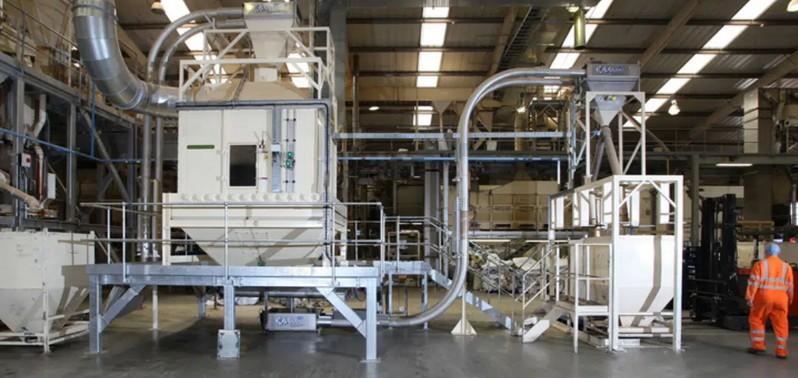 Conveying Systems
Conveying Systems
6+ MIN
06/07/2022
Are Pet Food Tube Conveyors Safe And Sanitary?
In 2021, the global pet food industry reached $110.53 billion and is expected to grow at a compound annual growth rate (CAGR) of 5.11% until 2029, when it will be valued at around $163.7 billion. Even though it was expected that the COVID-19 pandemic would have a negative impact on the pet food market – as it had on practically every other global market – the opposite occurred.
The pandemic led to an increase in pet ownership as people looked for companionship and turned to pets for emotional support. In addition, with more people working from home, they had more time to take care of their pets and pay attention to what they ate. Overall, the global pet food market experienced an increase of 4.75% in 2020 compared to 2019.
It is safe to say that pet ownership is at an all-time high. According to The American Pet Products Association, there are over 90 million households across the United States that have at least one pet.
Most of these pet owners are no longer interested in traditional pet foods. They seek healthy ingredients and demand higher transparency when it comes to nutritional labels. What's more, they are willing to pay extra for them. These trends do, however, raise some questions regarding safety and sanitization in pet food production.
Safety and sanitary regulatory compliance in the pet food industry
In the food processing industry – whether that is pet or human food – the safety of the product (food safety) is of paramount importance. A contaminated food product can result in recalls, severely affecting the company's image and revenue.
However, when it comes to the human and pet food industries, the liabilities go beyond mere recall and replacement costs. There is a potential for loss of life, which was the case with the Peanut Corporation of America's (PCA) 2008 tragedy. Nine people died, and over 700 others developed food poisoning due to salmonella contamination, which is a testament to what can happen when safety and sanitation policies are not strictly enforced. The pet food industry also had its share of unfortunate events, where pets have died as a result of contamination or wrong ingredient mixes ending up in the marketplace.
Since 2011, however, with the passing of the Food Safety Modernization Act (FSMA) – the largest food safety reform in the United States in the past 70 years – far stricter food grade regulations were put in place by the US Food and Drug Administration (FDA) concerning the pet food processing system.
As such, there's increased pressure on pet food manufacturers to pay closer attention to safety and sanitation. Pet food processing organizations need to shift their focus away from reacting to any foreign material contamination and look toward preventing it before it happens. It's for this reason that safety, sanitation, and easy cleaning are among the highest priorities when it comes to pet food conveyors.
Pet food material conveying challenges
Here are some of the most common safety and sanitary challenges that a pet food manufacturer might face:
Product breakage and line changeovers
One of the industry's most common issues is product breakage and degradation when animal feed is transported through pet food conveyors.
Several factors influence material degradation, including high conveyor speed, suboptimal inlet design, temperature changes, product shearing, and friction-induced separation. The immediate results may translate into wasted pet food products and higher production costs. It can also lead to a higher risk of cross-contamination of the conveying materials, particularly in the event of line changeovers.
When pet food manufacturers run different materials on the same lines, they need to clean and sanitize the feed conveyors between all changeovers to prevent contamination.
Sacrificing a bit of speed and overall production in favor of somewhat slower tube conveyors will help in minimizing many of the issues associated with product breakage. A tubular disc and cable conveyor has a more sanitary design overall and is easier to clean than other systems like a vibrating conveyor, roller conveyor, auger conveyor, infeed conveyor, chain conveyor, bucket elevators, pneumatic conveyors, and many other types of traditional conveyors.
Maintaining the right nutritional mix
It's also critical for pet food manufacturers to keep the right nutritional mix. Doing so consistently can prove to be a challenge with most conveyor systems. With ingredients having different densities and granularities, separation can lead to proportional inaccuracies.
However, Cablevey's cable and disc drag conveyor systems are better suited than buckets, pneumatics, spiral conveyors, vacuums, horizontal motion open conveyor belts, and other systems for moving material blends without altering the ratios designed by the nutritionist.
Cleaning cable and tube conveyors
The majority of production facilities use bucket elevators for their bulk handling. However, these systems are not exactly hygienically designed, meaning that they require extensive interior and exterior cleaning. As a result, you will have a lot of downtimes, particularly during line changeovers.
On the other hand, Tubular drag conveyors are excellent for food-grade applications because they comply with all of the FDA's sanitation requirements and specifications. Tubular cable and disc conveyors move bulk materials using high-strength, one-piece polymer discs. These are attached to polymer-coated 304/316 stainless steel cables that slide within stainless steel tubing, moving materials through the product stream gently, quietly, and dust-contained.
At the end of every conveying cycle, the discs remove any material fines or waste product from the tubing. Any material clinging to the disc and cable assembly will also be removed.
Ultimately, however, every facility will develop its own cleaning protocols. These will be based primarily on the sanitation regulations and challenges posed by the materials used. The material's reaction to water will indicate whether wet or dry cleaning would be the appropriate choice.
Wet or dry cleaning accessories can be quickly attached to the cable, allowing for fast and thorough cleaning of the system. This will help greatly in minimizing downtime between changeovers. Cablevey conveyors offer both wet and dry tube conveyor cleaning options.
Dry Cleaning
This internal tube cleaning option is applicable for 4-inch, 6-inch, and 8-inch system sizes and configurations and involves several pieces of equipment. These are:
Air Knife – This is a line insert strategically located to blow compressed air and eliminate any accumulated fines off of discs.
Brush Box – Another line insert that will brush off accumulating fines off discs.
Sponge Disc and Sanitizing Cleaner – This is a disposable sponge disc with an applied cleaning agent that's run through the entire system once and discarded.
Urethane Wiper Disc – Finally, this is a disc insert that wipes away any particles and accumulated fines.
Wet Cleaning
Wet cleaning is a fast and easy multi-step internal tube conveyor cleaning process. It is applicable for all the system sizes and configurations, just like the dry cleaning option. Here are the steps to wet cleaning in a tubular drag system:
Water Rinse – Once all material has been discharged from the system, water will be introduced to rinse out the inside of the tube and all other components.
Foam Agent – Second, a foam cleaning agent is introduced into the tube, cleansing all internal parts.
Sanitizing Rinse – A sanitizing rinse will run through the entire system, flushing out any remaining debris, contaminants, as well as the foaming agent.
Final Water Rinse – Lastly, a final rinse of hot water will flush out everything, including the sanitizing rinse, ensuring that the system and its components are all production-ready.
Conclusion
Pet food production facilities must adhere to stringent sanitation and safety regulations, just like human food production facilities. The right conveyor system will go a long way in ensuring compliance.
Tubular drag conveyors are an excellent choice for pet food handling because they are easy to clean and maintain. They also minimize the risk of contamination, helping you keep your facility running smoothly and efficiently.
Cablevey pet food conveyor systems are perfectly suited to move all pet food materials and mixes. Our pet food conveyors can also be engineered to service any part of the production process, making them the top conveyor choice for facilities that worry about finding a conveyor that fits their unique spaces.
Contact us today for more information on our pet food conveyor systems and to discuss your production needs with one of our experts. We look forward to working with you!
by Karl Seidel - Cablevey Cnveyors
 Dogs
Dogs
2+ MIN
05/07/2022
Small dog breeds at highest risk for dental disease, largest study confirms
The largest study of its kind analysed over 3 million dog medical records from BANFIELD™ Pet Hospital across 60 popular dog breeds across the United States. When reviewing the data by dog size, researchers found that extra-small breeds (<6.5 kg/14.3 lbs) were up to five times more likely to be diagnosed with periodontal disease than giant breeds (>25 kg/55 lbs). Other risk factors for periodontal disease included a dog's age, being overweight and time since last scale and polish. 'Regardless of the reasons that smaller dogs have increased risk for periodontal disease, knowing the true magnitude of the risk across breeds is an important step in providing quality care for all dogs, both in the veterinarian's office and at home,' stated Dr Corrin Wallis, Microbiome Workstream Leader, Waltham Petcare Science Institute, and co-author of the study. An underdiagnosed health issue When left untreated, periodontal disease (gum disease) in dogs can lead to pain, tooth loss, and other serious health complications. Despite it being one of the more commonly diagnosed issues by veterinarians, many dogs go undiagnosed. The retrospective study used advanced statistical methods to determine that the overall prevalence of periodontal disease in dogs was 18.2%. Although the true prevalence of periodontal disease (44-100% of cases) is only realised through in-depth clinical investigation, the figure reported in this study was consistent with other research based on predominantly conscious visual oral examinations. This isn't the first time research has shown an association between dog breed size and periodontal disease onset; two other Waltham studies, published in the BMC Veterinary Journal, found that periodontal disease progression is accelerated in smaller dog breeds like miniature schnauzers and Yorkshire terriers. However, this study - the largest of its kind - alongside our oral microbiome research can help veterinarians and owners reduce prevalence and enable more tailored and preventative care for pets. A good oral health routine to keep your pet's teeth healthy Dental disease in pets develops gradually and may be reversed if caught and treated early on. Preventing it, however, is better than any treatment. Check out our pet dental health guide for our experts' tips. by Witham pet care Sciences
 Market Information
Market Information
2+ MIN
04/07/2022
PremierPet invests R$ 1.1 billion in animal nutrition factory
According to information, the plant received investments of R$ 1.1 billion and allows the industry to double the dry pet food production capacity. The unit counts with 92 thousand m² of built area and 1 million m² of total area in the municipality of Porto Amazonas, about 80 km from Curitiba (PR). The factory has the capacity to produce 660 thousand tons of dry pet food. In the comming years the company plans to install production lines for snacks and wet pet food Animal nutrition guarantees a double-digit advance Premierpet has been operating for 25 years and belongs to the Grandfood group, controlled by Flávio Maluf, president of Eucatex and son of former mayor and governor Paulo Maluf. It is the market leader thanks to the Golden brand, which represents 15.7% of animal nutrition sales in Brazil, according to Euromonitor. With a higher average ticket, Premier ranks in the top 5 for sales, behind Mars' Pedigree and Wkiskas brands; and Purina's Dog Chow. 'We grew double-digit annual revenues and achieved leadership in the premium and super-premium segment in pet stores,' said Madalena Spinazzola, director of strategic planning and corporate marketing. Despite the demand, the manufacturer coexist with the increase in costs, derived from inflation and global situations that have been compromising access to supplies. However, while spending has increased by 50%, Premierpet has readjusted its average prices by just 15%. Some Categories drives pet food business Responsible for 80% of pet market revenues, the animal nutrition category had a 24% increase in sales in 2021, which represented R$ 30.5 billion. Euromonitor projects a 19% advance this year. One of the main bets of the sector is the increase in the demand for natural foods and higher added value. Large corporations have been joining this trend. A year ago, Nestlé opened a factory in Santa Catarina with an investment of R$ 1 billion. More recently, BRF bought Hercosul, maker of the BioFresh brand. by: Premierpet
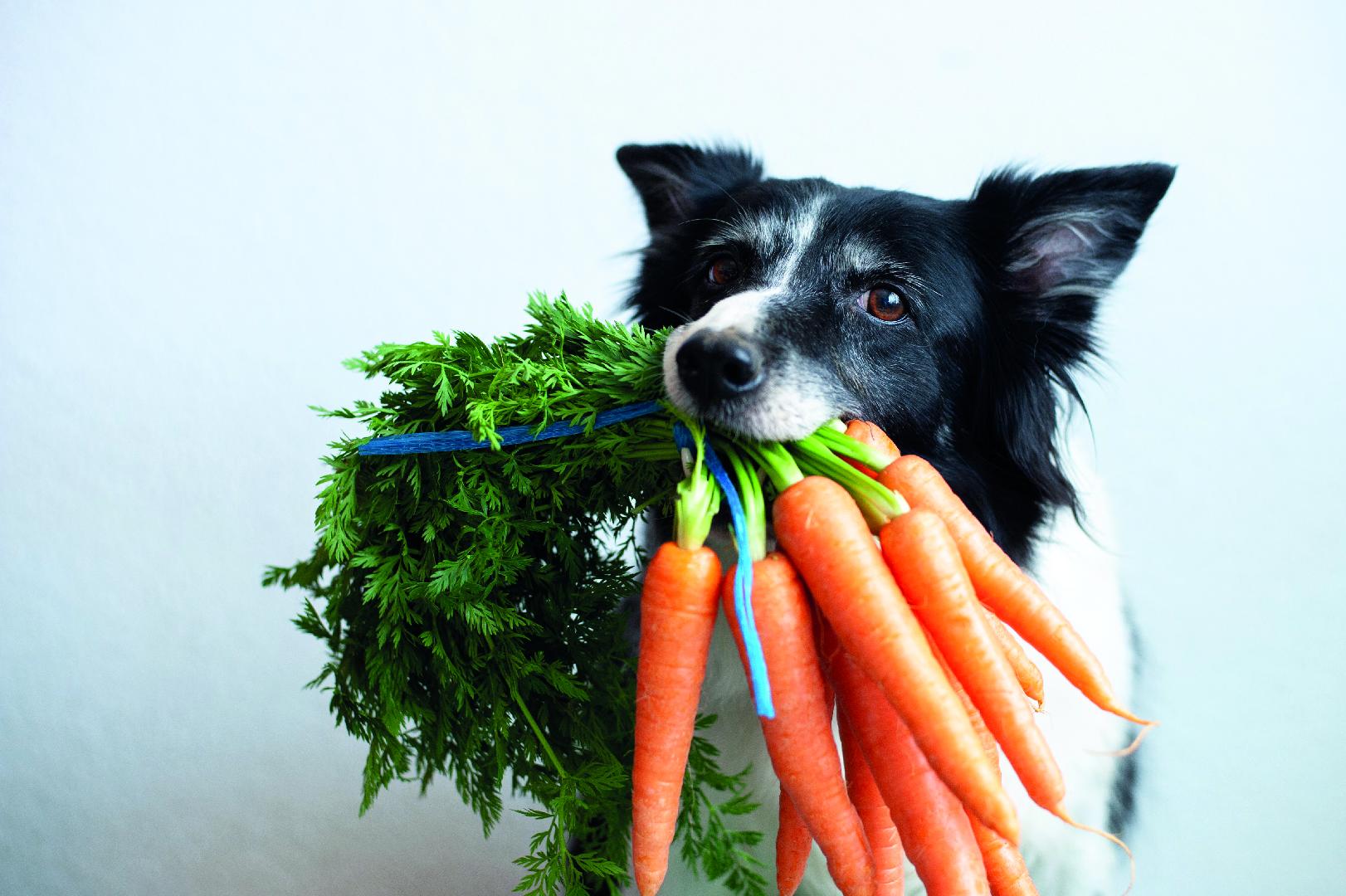 Trends
Trends
3+ MIN
01/07/2022
A year of innovation in pet food
There are exciting innovations in age-specific treats and foods, while products with sustainable slogans have potential. In this article we´ll discuss the major innovations that have been launched in recent months and the opportunities they represent for pet food manufacturers. Capitalize on clean label trends Consumers in the mass market are increasingly looking for recipes that do not contain harmful substances, such as artificial additives. According to consumer data from Mintel, a market research company in London, 41% of UK adults buying pet food are looking for all-natural foods. These clean label considerations are also impacting the type of food pet owners are choosing for their four-legged companions. Between 2019 and 2020, around 53% of pet food and product launches in Europe featured a "natural" slogan, and it's a category of claims that has grown steadily over the last five years - according to Mintel. The natural tagline category is dominated by the phrase "no additives/preservatives," which appears in 43% of launches Pet owners' expectations of clean labels have shifted from "safe" and natural ingredients to requiring access to product origin and manufacturing information. Germany. wet food United Kingdom. Hownd Hemp prizes and 100% vegetarian snacks Functional pet foods and products gain traction Pet food brands are responding to owners' interest in ensuring their pets live long and healthy lives by developing foods and treats that promise a wide range of functional health benefits, often linked to popular ingredients like CBD for anxiety, probiotics for healthy gut microbiota, or DHA for cognitive functions. 72% of pet food and products in Europe featured a functional claim/slogan (i.e. immune system, joints, muscles, nervous system), according to Mintel. Beaphar's Snack, launched in France, contains cannabidiol (CBD), which has acclaimed beneficial properties for dogs, such as improving vitality, stimulating the immune system, and supporting joints and muscles. France. Beaphar treats and snack with CBD. Pet food joins the cause of climate change The climate crisis will remain a long-term consumer concern, and brands must innovate to reduce their environmental footprint, sourcing from sustainable ingredients to plastic-free and compostable plastic packaging. As a result of the crisis, consumers are looking for organic products in all facets of their lives, including pet food and products. In France, 72% of pet owners say they try to buy pet food from environmentally friendly companies. In Europe, most of the ethical and environmental claims concern the packaging, whether it is made from recyclable materials or with an environmentally friendly process, such as soy-based inks. United Kingdom. Scrumbles recycled material, no plastic and ethical company logo. LATAM markets increase natural launches In Latin America, claims of naturalness (no additives/preservatives, all-natural product, GMO-free) have seen growth as a percentage of pet food and product launches. For example, additive/preservative-free claims more than doubled between 2015 and 2019 to reach 22% of all pet food and product launches in Latin America between 2019-2020. Lastly, other texture trends, and special dietary products, are also emerging, creating plenty of new areas of innovation to explore, as around 36% of pet owners in Brazil worry that their pets will get bored of eating the same type of food every day. Brasil. Padaria pet, wet petfood made with steamed ingredients. Peru. Completely vegan feed for dogs. What's next? This innovation review highlights what has been brought to market. In the short to medium term, consumers, including pet owners, will completely change the way they interact with each other, with brands, and pet food companies, due to the COVID-19 outbreak. Power, immunity, transparency of supply sources, and online availability will be important factors in the purchase decision. In the future, other opportunities, aided by new digital technologies, will facilitate the emergence of new products and services in the personalization space. Experimentation with unconventional sources of animal protein, which can benefit both pets and the planet, as well as advances in biotechnology will be of growing interest. By: Diana Mercado
 Vegetable Origin
Vegetable Origin
2+ MIN
30/06/2022
BENEO invests in pulse-processing plant.
BENEO, one of the leading manufacturers of functional ingredients, has announced a €50 million investment in a new pulse processing site in Offstein, Germany. The site will produce protein rich pulse ingredients for food and animal feed. It will focus initially on protein concentrate, starch rich flour and hulls from Faba bean, with the option to process other pulses in the future. The new production site further strengthens the company's plant-based protein portfolio and enables BENEO to meet growing demand for plant-based food and feed ingredients. The plant-based protein trend is here to stay. It is predicted that by 2027, 75% of all protein demand will be vegetal(i), while products using these proteins are expected to reach 11% CAGR between 2020-2027(ii). There is also growing popularity for pulses, with pea and Faba bean considered the rising star ingredients of new product launches worldwide, having achieved a CAGR of 20% between 2016-21(iii). Throughout BENEO's entire supply chain sustainability is top of mind. Pulses help to reduce green house gas emissions at farm level. For example, Faba beans provide nitrogen for themselves and subsequent plants and therefore nitrogen fertilisation is not necessary. The Faba beans will be locally sourced from farmers that are certified by the Sustainable Agriculture Initiative (SAI) and thus follow sustainability standards. As BENEO is manufacturing Faba bean protein, starch rich flour and hulls, the crop will be fully used and completely valorised for functional ingredients. Furthermore, the production process has been chosen for its low energy consumption in comparison to alternative processes; overall contributing to BENEO's carbon neutrality and sustainability targets. Work has already begun on constructing the plant and is expected to be completed within the second half of 2024, creating up to 25 jobs at the Offstein site. However, to ensure that food and feed customers can benefit as soon as possible from Faba bean ingredients, BENEO will process the raw ingredients in intermediate production facilities, until the new plant is fully operational. This means that first quantities of BENEO's Faba bean ingredients will be available from the start of June 2022 onwards. BENEO's Faba bean protein concentrate and starch rich flour will be used for protein enrichment and texture improvement in meat and dairy alternatives, as well as (gluten-free) bakery and cereals. Faba bean hulls and starch rich flour will be used in feed as a vegetal protein or fibre source for sustainable petfood, aquafeed and livestock nutrition. Christoph Boettger, Member of the Executive Board at BENEO: 'The recent investment by BENEO into a new pulse production site is only the starting point. We strongly believe in plantbased ingredients and therefore see the new plant as an important first step in enlarging our protein offering moving forwards. This will enable us to produce a wider variety of sustainable plant-based protein ingredients over the coming years.' by Beneo
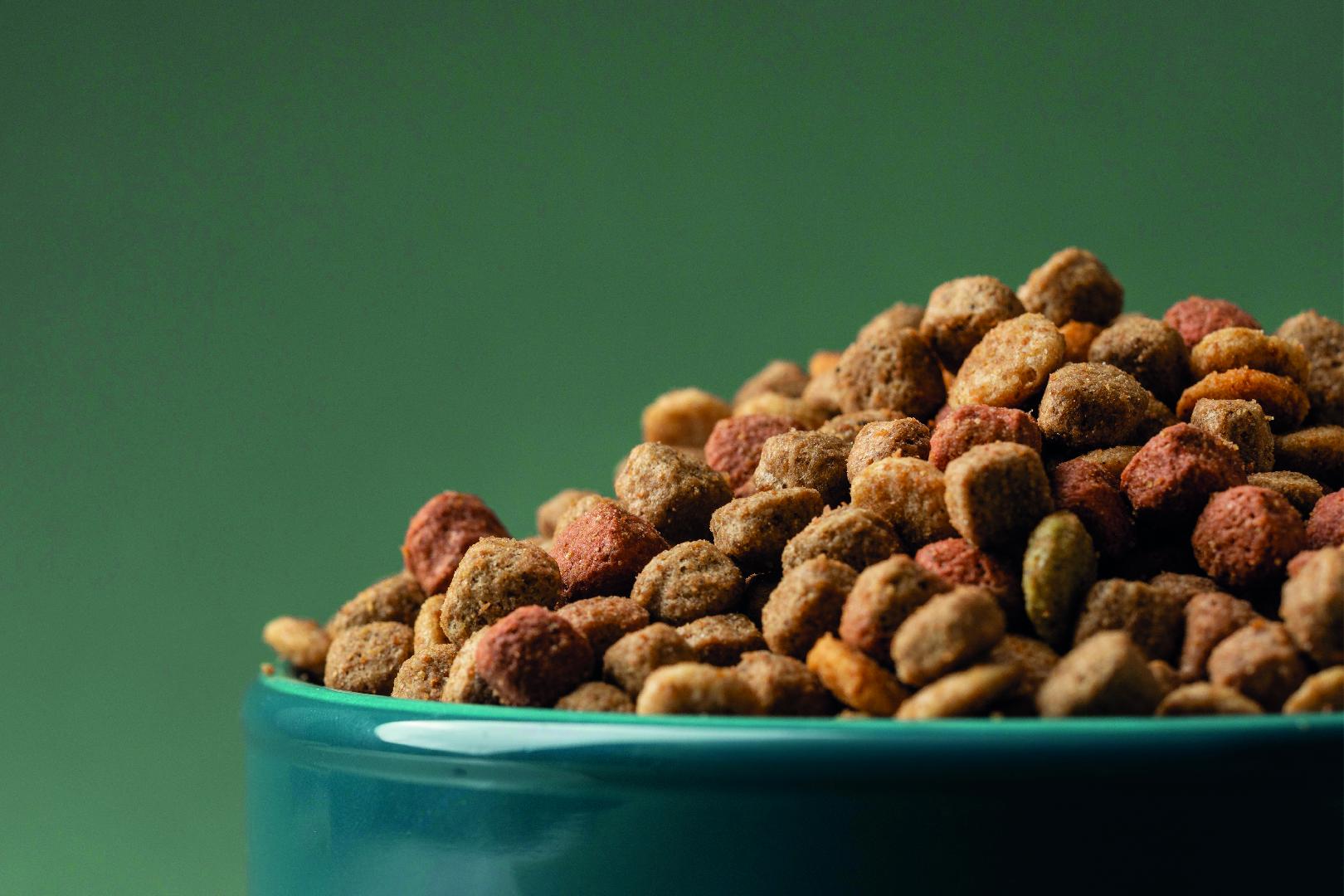 Trends
Trends
4+ MIN
29/06/2022
Por María Candelaria Carbajo
Technological challenges in pet food manufacturing
Technology applies to absolutely everything: we have already discussed how e-commerce and the Internet have grown within our industry. Let's now see what are the main challenges in pet food manufacturing that technology can help us overcome. In recent years, dog and cat food markets have been ranked the most dynamic worldwide, with a global average annual growth of more than 5%. Even in 2020, with the production and logistics problems presented by the pandemic, the market kept growing. A recent report by Grandview Research states that the global pet snacks and supplements market alone was valued at $1.47 billion in 2020, with the CAGR currently expected to be 5.9% through 2028. All these trend factors indirectly promote the technology use improvement in the sector since it allows us to improve, streamline and perfect food production processes. Current technological challenges in the pet food industry Automation Automation in pet food processing is no longer an option; we need speed and agility in manufacturing. We need processors that get better at running; this way, we can expand quickly and efficiently. The biggest challenge is, perhaps, full-scope automation, not automation of different instances individually; beyond achieving automated machinery, the problem lies in creating automation that goes from the arrival of raw material to the distribution point. Humidity content Pet food can be distinguished based on its water content and stability over time. For instance, dry or canned food has a longer shelf life due to its water content and pasteurization process. From a technological point of view, the main challenge is to ensure the correct storage of products with a higher amount of moisture for longer periods without losing their quality and palatability. Fat content In this case, technology is already answering how to achieve a higher fat content in food. With technological innovation applied to extrusion, be it simple, coating, or vacuum infusion, we can produce products with higher fat content. Products with two structures Another technological innovation seeks to facilitate the product's gelatinization process. To this day, that takes place by steam treating the products before the extrusion stage (known as the co-extrusion process). This format allows the manufacture of products with two structures, one of them as a coating to increase its long-term stability. Glycemic response modulation Thanks to the technological machinery evolution used in the extrusion process, it is possible to modulate the glycemic response of animals to the food they consume. With what? Other sources of starch, such as sorghum, which are less digestible than traditional starch sources (such as rice or corn), allow the manufacture of better pet food. Drying In the extrusion process (especially in the drying phase), the challenge is to improve the quality control operation. Water content values above the recommended level make food more vulnerable to microbiological instability. That is why we need precise and detailed quality control systems to achieve the correct quality; this will also allow a homogeneous effect on the product structure and the batches manufactured. Innovative technological solutions Deville Technologies presented a solution in 2021 to improve the automation of the pet food production process. The company has developed (after years of testing with rabbit muscles, beef liver, salmon fillets, and duck hearts) a dicing machine that meets the industry's needs. The FAM CMD.2 Dicer is designed with minimal cutting tools and complete separation between zones. It also features higher durability to handle a variety of product temperatures while producing at high capacities, eliminating process steps and increasing your competitiveness. In addition, the equipment has a built-in metal detector to ensure that there are no foreign objects within the workflow. For its part, Key Technology designed a sorting solution for pet food processors. They developed VERYX®, a digital grading platform specifically to identify and remove foreign material and product defects. The platform seeks to eliminate cross-contamination, improve product quality and safety, and reduce labor. It works with various formats and products such as croquettes, chews, dry, dehydrated, or freeze-dried sweets. It can work at the end of the production line to ensure the quality of the final product or near the reception of crude oil to inspect the products' ingredients. It can detect color, size, shape, and structural properties, with the ability to remove defective products or materials such as plastics, glass, paper, and other foreign objects. These are the main challenges facing technology implementation in the pet food industry. The examples are only two launches from 2021, but we are sure that, in 2022, many more will come from the hand of large technology companies seeking to improve the production process and the final product that we offer to the pet food market. Would you tell us what technology is most urgent for the pet food production process for you? Source: All Pet Food
 Cats
Cats
6+ MIN
28/06/2022
Natural Cat Food Trends to Watch in 2022
Cat owners are increasingly interested in better-quality foods, and manufacturers are offering natural diets with the intention of providing cats with the nutrition they need—without unnecessary ingredients and processing. Amelia Perches, social media and PR manager at Nulo Pet Food, a manufacturer in Austin, Texas, said that many of the current cat food trends have been in line with human nutrition trends. People are avoiding highly processed, synthetic and GMO ingredients, she added. 'To Nulo, 'natural' means our cat food aligns with the nutrition required for carnivores and that the ingredients are high-quality sources from reputable suppliers,' Perches explained. 'This means most of the protein in a cat's diet should be coming from meat, poultry and fish rather than plants; that carbs should be kept at minimal levels; and that unnecessary ingredients should never be used—like artificial or controversial additives.' Rob Cadenhead, general manager at St. Francis, Wis.-based Gott Pet Products, parent company of pet food brand Hound & Gatos, said that to qualify as 'natural,' a food should be sourced from whole food ingredients, prepared without additives or artificial preservatives and be as minimally processed as possible. Consumers are looking for a brand they can trust and food with recognizable ingredients, said Dan Markenson, head of retail at Dr. Marty Pets, a Los Angeles-based manufacturer. 'They are looking for an ingredient deck that's easy to understand and a food their cats will love, naturally,' Markenson added. 'They're also looking for a high-protein diet. Cats are obligate carnivores, so they need a diet rich in real meat to thrive.' As more options become available, many cat owners are doing their research. 'Today's cat parents are more enlightened than they used to be,' Cadenhead said. 'Besides looking for a diet that features real animal protein, they're seeking diets with ingredients that serve a functional purpose, such as sweet potato, broccoli, berries and whole eggs. They're steering clear of wet recipes with controversial ingredients such as rendered animal fats, carrageenan or guar gum, and avoiding dry recipes prepared with highly processed, rendered poultry meals. Every Hound & Gatos recipe is specifically designed with these requirements in mind.' Shoppers are taking a closer look at what is in their pets' food, agreed Sherry Redwine, owner of Odyssey Pets, a retailer in Dallas. 'When customers come in and say they want a 'natural food,' what they really want is a food that's healthy with high-quality ingredients,' Redwine said. 'But it's not enough for them to just see the word 'natural' on the bag. They still want to look at the ingredients—as they should.' Elements such as high-quality protein, life-stage and breed-specific formulas, and superfood ingredients are important to cat owners, Perches said. 'But even more influential are the health benefits tied to them such as unique formulas for growing kittens, indoor adults and senior cats—as well as special-need solutions like weight and hairball management,' Perches added. 'Premium cat food consumers expect the same solutions as conventional products with the added confidence that what they are putting into their pet's bowl really is the best choice for long-term health.' Cat owners who want the best for their pets are willing to pay a bit more, according to Cadenhead. 'Freeze-dried diets are gaining in popularity, despite their relatively high price,' he said. 'I'd attribute this to the perceived quality and purity of the ingredients. Wet diets also remain a top choice for pet parents.' Serving Up Hydration The natural cat food category continues to broaden with new varieties, and many manufacturers are turning their attention to offering cats more hydration. 'Current trends in the marketplace show an increased focus on the hydration needs of cats,' Perches said. 'Cats have evolved from ancestors which had very little access to free water, so our cats have a low thirst drive and are metabolically oriented to obtaining water from their food sources. Providing moisture during mealtime through a canned food, topper or broth will increase a cat's water intake in a way that is in sync with its natural behavior.' Perches said that Nulo is innovating in the cat hydration space with a variety of wet foods and toppers including Hydrate water enhancers as well as three recently introduced product lines for cats: Nulo FreeStyle Signature Stews, Nulo FreeStyle Pâté Cans and Nulo FreeStyle Chunky Broths. 'Nulo's new recipes for cats include irresistible options like silky smooth pâtés, rich and hearty stews, and tender morsels in a savory broth,' Perches said. 'In addition to delivering high-quality, animal-based protein for cats, these new recipes also feature high moisture levels to help cats get their daily hydration.' Cat owners are seeking fresher formats, including raw food or gently cooked, human-grade food, Markenson noted. 'They're beginning to understand the potential problems with kibble that is cooked at high temperatures, and then coated with palatants,' Markenson added. Dr. Marty Pets launched Dr. Marty Nature's Feast Essential Wellness last year, which is selling well, he reported. The freeze-dried raw cat food line includes three formulas with different protein blends: Poultry; Fish & Poultry; and Beef, Salmon & Poultry. 'Each formula is made with premium meats for protein and omega-3s to support healthy teeth and skin, easy digestion, balanced energy and vital organs—and antioxidants and prebiotics from real seeds, veggies and fruit to support lasting health,' Markenson said. Upgrading Cats' Meals Cats are notorious for being picky eaters, so even those pet owners who want to make a switch to a higher-quality, natural food may face an uphill battle. But independent pet specialty retailers are well suited to help. Kaitlin McGrath, owner of Belmont Pet Shop in Belmont, Mass., said that many of her customers do require some guidance. This includes education on why making a switch to a more healthful food is worth the effort. 'Temperature, taste and texture are three of the most important factors to a cat,' she said. 'If the cat is already eating a pâté, stick with a pâté, but find a healthier option. If they really like shredded meat, look at the shreds. We can help to transition a cat by keeping it similar to what they're used to eating.' Mark Tincher, manager at The Pet Bowl, a retailer in Delaware, Ohio, agreed and said that cat owners commonly need some guidance. 'We only carry higher-quality brands here, but about half of cat food sales are issue driven,' Tincher said. 'The cat is experiencing a problem, so they make a switch. The other half are customers who realize there are better options out there but need some help. We are very selective about what we carry, so any choice here is a quality choice.' Amelia Perches, social media and PR manager for Nulo Pet Food, a manufacturer in Austin, Texas, said that with cats being so picky, trial sizes, free samples and/or a money-back guarantee can be excellent tools to encourage cat owners to try something new. 'Additionally, adding clip strips and endcaps with trial-sized packets within the primary kibble aisles can help to suggest a mixed feeding approach, while clip strips in sections like nutritional supplements can suggest a tailored solution for those searching to resolve a common issue like dry skin,' Perches continued. 'For those owners who aren't ready to commit to a diet overhaul, having small packages placed around the store can be an intriguing invitation to try it.' by PPN
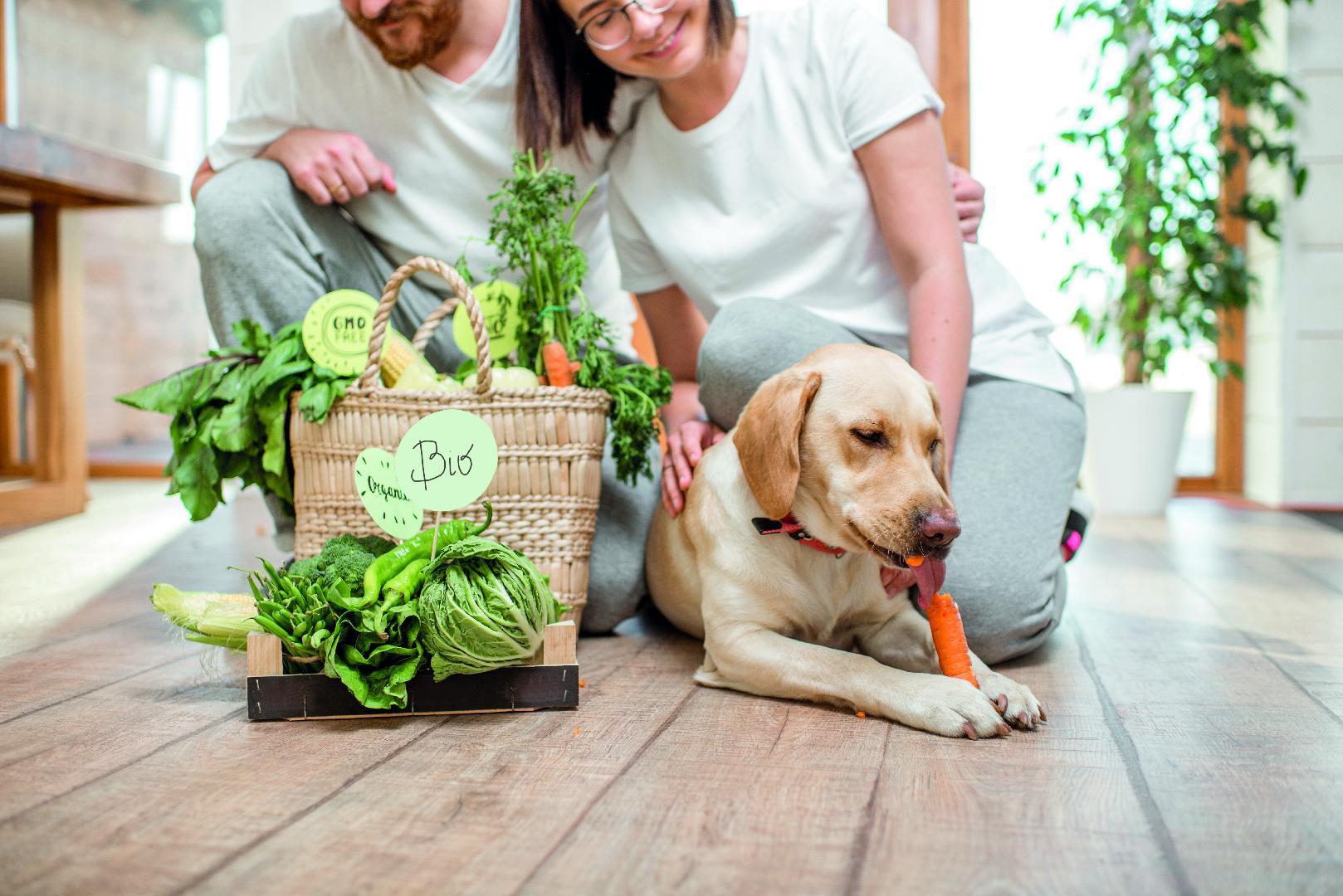 Micro Ingredients
Micro Ingredients
3+ MIN
27/06/2022
Nutritional alternatives to improve the quality of pets life
During the last two years, the number of dogs and cats adopted has increased worldwide to alleviate the effects of isolation caused by the COVID pandemic. The human-animal bond is a mutually-beneficial and dynamic relationship influenced by behaviors considered essential for the health and well-being of both. Several scientific articles demonstrate the beneficial effects of this human-animal relationship in humans. Therefore, pet parents have become increasingly committed to reciprocating these benefits. A recent survey by Mintel (2021) showed that 33% of the Peruvians interviewed said that there are no limits to the amounts they would spend for their pets' health. In Mexico, 73% of respondents own dogs, and 35% own cats. The Latin American pet food industry has increasingly matured and grown. Latin-American consumers seek cost-effective premium pet foods. Although food price is considered when purchasing pet food, food quality has become a significant factor, particularly products offering natural and sustainable options. According to Mintel, pet parents are increasingly committed to ensuring their pets a long and healthy life and seeking preventive measures to achieve this goal. In the last five years, more than 5,100 products with an immune health claim (Immune System - Functional) were launched worldwide, and this figure has shown a 7% annual increase (CAGR 2018-2020; MINTEL). Hippocrates said, 'Let food be thy medicine, and let medicine be thy food'. This sentence perfectly applies to today's pet food market with the extensive adoption of functional and nutraceutical ingredients. Moreover, due to COVID, consumers seek products to prevent diseases and improve their quality of life through nutrition. The yeast Saccharomyces cerevisiae has been used as a functional food ingredient for thousands of years. In the pet food industry, its contribution to food palatability and functionality has been widely demonstrated, as it is a source of amino acids, peptides, nucleotides, B vitamins, manna oligosaccharides, and beta-1,3/1,6-glucans. Beta-1,3/1,6-glucans are natural polysaccharides located inside the yeast cell wall, protected by a mannan oligosaccharide layer. They have proven direct beneficial effects on the gut immune system. However, to exert such benefits, the yeast needs to be submitted to a purification process to break down the mannan oligosaccharide to release the beta-1,3/1,6-glucan molecules. Biorigin's MacroGard is a world-class biotechnological product with extensive scientific evidence of its effectiveness. MacroGard is composed of beta-1,3/1,6-glucans, and its benefits are related to immune modulation and glucose and lipid metabolism. Studies with dogs and cats evaluating MacroGard added to extruded food and cookies (or fed in capsules) demonstrated its effects on: dog atopy (Beynen et al., 2011), osteoarticular conditions (Beynen & Legerstee, 2010), oral health (Verbrugghe et al., 2012), inflammatory response reduction (Oliveira et al., 2019; Vetvicka and Oliveira, 2014; Zaine, 2014; Verbrugghe et al., 2012; Zaine, 2010), neutrophil and monocyte phagocytic activity (Vetvicka and Oliveira, 2012; Zaine, 2014), antibody production (Oliveira et al., 2019), glucose and insulin metabolism (Ferreira et al., 2022; Vetvicka and Oliveira, 2014), and lipid metabolism (Ferreira et al., 2022). MacroGard can be fed to dogs of all ages, strengthening their defenses to face possible challenges. It is particularly indicated during vulnerable life stages, such as for growing and elderly dogs. MacroGard is resistant to heat processing during pet food manufacturing, ensuring its safety and effective function when fed to dogs and cats. Source: Biorigin
 Trends
Trends
4+ MIN
23/06/2022
Por Luciana Chippano
Automation and data, a quantum leap in the pet food industry
What do we talk about when we´re referring to automation? Automation is about using technology to execute repetitive tasks with little human intervention. In many cases, the intervention becomes null. Incorporating automation into pet food production guarantees us a reliable and optimized solution to speed up the production operations, reduce costs and human errors. From basic automation that needs the help of men to function correctly, going through comprehensive automation and reaching integrations with other control or traceability systems, for example, the possibilities of incorporating this technology into the production process are simply countless. Automation in pet food production The truth is that, in most cases, the first idea is to look for solutions that can directly impact human lives. This, some time ago, meant that the pet food industry was left behind. But today, when the lines between requirements, demand, and standards among pet and human food are virtually invisible, we can find ways to benefit from advances in equal measure. In this sense, the key is to adapt the solutions that come onto the market. As pet food has become more humanized, the transfer of equipment from human food processing to the pet food industry has become more common. A key aspect in the advance: the data If we talk about automation, we can't avoid talking about data, an ingredient that, when harnessed, can give us an invaluable amount of information to improve our processes, products, and market reach. Most of the advances achieved in recent times regarding process automation happened thanks to, precisely, the collection, grouping, and arrangement of data. For example, the cost of collection sensors has dropped significantly, making it more cost-effective to add them to machinery. This change, along with advances in networking, allows a pet food production chain to be interconnected. Data travels to a central location, from where it is available in real-time (such as to make process adjustments), or deferred, to observe long-term trends and support continuous improvement projects. Nowadays, data is primarily useful to trigger certain events or system responses according to a "stimulus." In the case of machinery such as microbalances, extruders, and dryers, feedback from various sensors is used to adjust process control. However, in the long term, it is expected that more complex and intelligent systems are developed with the help of artificial intelligence or machine learning to respond to even greater variations. Ultimately, better data availability allows us to improve processes, making them more accurate and efficient. Given that, we could have greater control over plant operations, quality control, raw materials reception, product manufacturing, energy consumption, waste, efficiency, and production costs, among other variables that act in production. The great benefit of data: real-time information The data accumulated in historical periods is undoubtedly useful to make intelligent decisions in the future, but perhaps the 180º turn that they bring us to the industry is, in reality, immediacy. Connecting a data flow to a plant decision-maker is a revolution, as we can find errors or mismatches live and take action on them. When a problem is not detected in time, we will be producing, throughout an entire batch, a product that does not meet specific requirements or standards, and in the end, we will have generated nothing but waste. This can apply to knowing the accuracy of utility inputs such as water, steam, and electricity and certifying that temperatures are correct, for example, to ensure repeatable, efficient, and safe processes. Data and automation do not replace men; on the contrary, it empowers them; now, a control employee with real-time data can make decisions about the production carried out. And that is an invaluable asset for the company's efficiency, profitability, and success. Finally, we must say that data also brings flexibility and transparency to the process. Having this information automatically available allows us to give response to the need to keep up with a constantly evolving market while continuing to produce. Good automation offers the flexibility to reduce time-to-market with new products, additions, and ingredients. Summary Automation allows us to respond to market advances and trends; It makes it easier for us to comply with new standards and, in turn, improves the technical capacity and functionality of the production system. Implementing automated systems brings innovation, and only with it, we will achieve cost-effective processing and consistent product quality. Having state-of-the-art automated machinery is the door to constant improvement to faster, more precise, and efficient production. Finally, it is important to say that having total and real-time control of the process helps achieve integrated traceability, so we do not doubt that automation is a checkmate in the pet food processing and production. Source: All Pet Food
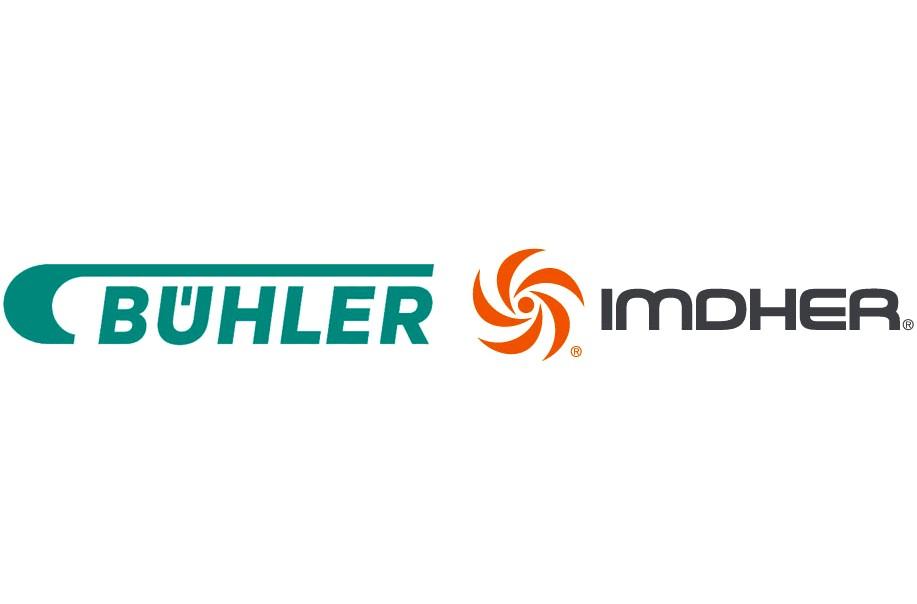 Market Information
Market Information
2+ MIN
22/06/2022
Bühler and IMDHER join forces in a joint venture for the feed sector in Mexico
The new company, called IMDHER-Bühler, will offer its customers Bühler's core machines and IMDHER's expertise, to provide solutions that will enable them to improve the capacity and efficiency of their operations. IMDHER counts with four decades of experience building feed, pet food and aquaculture plants. It´s a family company, whose market share is about 20%. For its part, Bühler is buying a minority shareholding of 49% in the new IMDHER-Bühler, which will be directed by Luis Díaz, CEO of IMDHER 'We believe the increase in meat consumption can be achieved in parallel with a reduction in its environmental impact. Through the most modern and efficient technologies to reduce waste and energy consumption, and at the same time contribute to animal welfare, we help meet the food needs of millions of people in the most sustainable way', said Johannes Wick, executive president of Bühler grains and foods, in a statement. "With IMDHER we have the ideal partner to serve the growing and important Mexican market with more efficient solutions and optimize a broad technological base." "The joint venture with Bühler represents an opportunity for us to include their technology and solutions to our existing assets and thereby expand our offering to customers in the dynamic and expanding Mexican market," Diaz said in a statement. by All Pet Food
 Interviews
Interviews
7+ MIN
21/06/2022
The Interview - Vladmir Maganhoto
Dear Vladmir, it is a great honor for us to be able to interview you. As part of BRF, a company with more than 85 years of history and a great team of more than 90 thousand employees, could you give us a brief personal and company introduction? BRF is present in more than 117 countries. Its purpose is to offer quality food, increasingly tasty and practical, for people and their pets around the world, through the sustainable management of a long and complex living chain, which provides a better life for everyone, from farm to table. Owner of iconic brands such as Sadia, Perdigão, Qualy, Biofresh, Balance and GranPlus, the Company bases its actions on the fundamental commitments of safety, quality and integrity. The company bases its strategy on a long-term vision and aims to generate value for its more than 100,000 employees around the world, more than 350,000 customers and approximately 10,000 integrated producers in Brazil, all its shareholders and for society. The phrase "Better life" is the purpose that guides the company, we would like you to tell us what that precious motto means to you? Our purpose is to offer quality food, increasingly tasty and practical, for people all over the world. We do this through the sustainable management of a long and complex living chain that provides a better life for everyone, from farm to fork. Our story began 87 years ago. Since then much has changed in the world and we have also been changing to continue evolving and writing our history. We are part of a large ecosystem and we know that our role in the world only makes sense if we contribute to a better life for those who are also part of it. Regarding the market growth in your country, Brazil, how much do you think the demand for Pet Food ingredients will continue to grow? How do you think the Pet Food market will look like in a few years? The pet market has enormous growth potential. We estimate a double-digit increase per year, reaching retail sales of more than R$ 40 billion. Our expansion into Pet Food is one of the main growth paths of the Company's strategic plan, Vision 2030, to triple its size by 2030. Specifically in this segment, we are the 3rd largest player and we´re working to be one of the two big players by 2025. Adding the acquisitions of Mogiana Alimentos and Grupo Hercosul, BRF Pet reaches approximately 10% market share, according to data provided by ABINPET – Brazilian Association of the Pet Products Industry. BRF Ingredients states that "a better future will demand quality food", and in line with that belief there is a phenomenon of "humanization of pets"… what feeding trends do you think will prevail for our four-legged friends? What are the trends that could last over time? As mentioned in the question itself, there is indeed a greater connection between owners and their pets, and this close interaction between them is absolutely genuine. Through our brands, we are investing heavily in products with high nutritional value, which benefit the health and longevity of dogs and cats. A good example of a trend in the Pet Food segment is natural products. According to Mintel's 2021 report 'A year of innovation in pet food and products', Pet Parents are increasingly looking for more natural food options for their animals. In addition, according to the survey, the owners showed a preference for foods that contain safety and functional benefits for the animals. The survey also reflects consumer concerns about transparency regarding food ingredients used in production. In our portfolio, for example, we have the Guabi Natural and Biofresh brands, two benchmarks in the natural pet food market. The recipes are developed by experts in animal nutrition and add the most nutritious ingredients to each ingredient, without GMOs, artificial colors or flavors. In addition, BRF Pet has a robust portfolio of brands for a wide universe of owners and pets that includes the Balance, Faro and Herói brands, which are aimed at the supermarket channel, while Three Dogs, Three Cats, Primocão, Primogato, Apolo and Átila, Guabi Natural (market leader in the Super Premium Natural segment), GranPlus (deputy leader in the High Premium segment), are aimed at the largest sales channel in Brazil: specialized pet stores (pet shops and veterinary clinics). With this robust portfolio, we can offer quality, reliability and adequate nutrition for different profiles of Parents and their pets, in different sales channels in Brazil and in the world. As Director of BRF, could you tell us if you are developing any new products for the Pet Food industry? After completing the integration of operations with Hercosul and Mogiana Alimentos, earlier this year, we are now focused on expanding our Pet business. For the second half of the year we will work on the execution of our growth plans, such as: launching new natural products for dogs and cats; increase in production capacity; logistics optimization and factory automation. We are committed to our innovation plan and to meeting the needs of our customers and the market. With this move we will have a complete portfolio of brands and products, mainly in the premium and super premium segments, reinforcing our operations in the specialized channel. In addition, we will use all of BRF's robust platform to obtain relevant competitive advantages, such as obtaining grains at more competitive prices. We are committed to becoming one of the leaders in pet food in the country. Our Vision 2030 project is underway and we are focused on bringing the best products to this market, which has enormous growth potential. We are excited to take the next steps and consolidate our position as one of the main market players in Brazil and worldwide. BRF is also a company committed to the environment, could you tell us what actions you take to promote and develop sustainable management? Sustainability is in the BRF Culture, in our 2030 Vision, in the business strategy and in the day-to-day management of our activities. For BRF, sustainability is a journey that has not yet begun. We are committed to continuing and inspiring each person to be an agent of change. Our ambitions reflect the awareness of our responsibility. We know that it is always possible to do more to provide a better life for people and the planet, in line with our Purpose, and to increase our transparency and reinforce our ambitions, we have established global and transversal Commitments with ESG (Environment, Social and Governance). , connected with the Company's Growth Vision. We are ready for a sustainable growth journey, thanks to the consistency of our management, strategy and competitive advantages (brands, people, digital transformation and operational excellence in the integrated chain). We work on several fronts to improve our performance, including projects to reduce water in equipment, infrastructure modernization and application of the Lean philosophy (lean production) in factories, valuing waste control without prejudice to the sanitary field. Through actions such as the reuse of water (avoiding new extractions from the environment), the prioritization of surface catchment (with greater renewability of the resource), the treatment of wastewater for its release and the return of about 95% of the water captured from the environment. In addition, we also invest in green projects. The issuance of green bonds allowed the Company to increase its investment capacity in green projects, focusing on categories such as energy efficiency, renewable energies, sustainable forests, reduction of greenhouse gas emissions, water management, packaging, reduction of the use of raw material or waste management. On the wake of pandemic, we have seen a growth in online sales. How did the company manage to adapt to this marketing trend? Does BRF consider it favorable, and do you think incorporating it in the future? The evolution of the e-commerce in the pet segment is a movement that has intensified in recent years, mainly with the acceleration of digital use since the start of the pandemic, but also with the entry of large players in the country on large platforms. usability, relevant investments and offering differentiated services. BRF Pet has been supporting these partner customers and investing to grow together and even exceed expectations in the pet food category. This is a favorable trend for Pet Parents, mainly due to the convenience and practicality generated by access to services such as delivery, pick-up and through subscription programs. It is also favorable for the industry, which ensures that its products are available and accessible with a click of the owner. As we were commenting before, and also as a significant change since confinement, as well as the demands of pet parents when it comes to feeding them. How do you think this benefited the Industry? Do you believe that companies are ready for this requirement? Pet Parents are increasingly demanding, they seek information and knowledge to choose the best food for their pets. As with human nutrition, they began to understand that good nutrition promotes a longer and healthier life, as well as helping to prevent diseases and improve the quality of life of dogs and cats. This trend, added to the great level of humanization existing in the relationship between owners and pets in Brazil, favors our industry, and in particular BRF, which has the same purpose of providing a high nutritional level and quality of life to pets. In addition, we have a solid portfolio of innovations, which seeks the best in technologies and ingredients, combined with extensive technical experience in animal nutrition to provide increasingly innovative foods with high nutritional value to meet the entire dog feeding process. and cats, including dry food and wet food and treats. Source: All Pet Food
 Trends
Trends
4+ MIN
14/06/2022
Por Luciana Chippano
The packaging revolution: service and sustainability
A significant increase in pets in households worldwide, together with increased interest and expectations of owners about the quality and variety of products, that is, the trend towards humanization, drives innovation. In this sense, we can say that the motivation for advances in technology and sustainability is the consumer himself. Without going any further, if we compare the pet food and snack packaging of a decade ago with those of today, we would find significant differences. From the rise of chilled foods or individual-serving packs to greener-packaged big bags, new materials and formats are literally and figuratively revolutionizing the market. Regulations in Latin America In the member countries of MERCOSUR (Argentina, Brazil, Paraguay, Uruguay, Venezuela, and Bolivia -in the integration process-) and their associated states (Chile, Colombia, Ecuador, Guyana, Peru, and Suriname), the reuse of plastic materials for contact with food is prohibited by GMC resolution 56/92, except for some future conditions. In the last 15 years, several factories focused on PET decontamination technologies have emerged in Latin America. In fact, in the MERCOSUR countries, there are already mandatory regulations and standards (and other voluntary ones) related to safety issues of post-consumer recycled PET. These requirements have taken as references to international organizations for risk assessments, regulations, and scientific opinions, the FDA of the United States, and the EFSA of the European Union. In the region (and in the world), PET is the main post-consumer recycled input, although there has been an interest in expanding the current legislation to other recycled plastics. The (re)evolution of graphic design, at the service of information One of the significant improvements of this packaging revolution involves the availability of information. Nowadays, having clear and extensive information is a priority for all consumers and, therefore, it must also be for manufacturers. Whether it's usage information, ingredients, or recycling advice, companies and their design teams focus on treating packaging aesthetics not only as something attractive to stand out from their competitors, but also as a utility in itself: to inform, and with information, provide security to the consumer, and therefore… Sell. To this day, hundreds of studies and investigations have stated that consumers respond to the visual presentation of a product. Therefore, it is only logical that we are witnessing the implementation of high-quality graphics and design on pet food packaging in first-world countries (such as Germany, the United States, Germany, and Russia). The visual appeal of packaging extends to aesthetics; today, it has more to do with how products present as a whole. For this very reason, graphic design is a focus of innovation in the industry. Currently, the driving force behind the pet food category is the differentiation of product presentation on the shelf to visually communicate the premiumization of that specific food (and the industry in general). Sustainability, the focus of innovation Indeed, innovation in the pet food industry is disrupting: nutrition, food formulation, ingredients, packaging, and technology, among other aspects. However, we find 3 common points in all of them: sustainability, limited resources use reduction, and pollution and waste reduction. In this sense, the continuous push for more sustainable packaging is more relevant than ever in the market. At this time, it is imperative to pay attention to how we package the products and the waste the process produces. Undoubtedly, we are already aware (or we should be), at an individual and corporate level, that we have only one planet; and that we must be better stewards of resources and the environment. The same consumers say that given to choose on equal terms, they prefer brands that work to achieve more sustainable packaging. Cases of success in packaging innovation: walking towards sustainability ● More reusable packaging and custom-made paper bags are being introduced to the market, which reduces the carbon footprint. ● The global manufacturer Nestlé has partnered with Amcor, a packaging manufacturer, to jointly launch the industry's first flexible and recyclable autoclave bag, a high-barrier container for pet food. ● Another large packaging manufacturer, Mondi, developed in 2020 the BarrierPack Recyclable, a fully recyclable plastic laminate container and qualifies for store delivery labelling. ● Printpack developed Preserve, a line of recyclable packaging for pet food that meets the design standards of How2Recyle, a communication system for ways to recycle packaging. In addition, they are made with post-consumer recycled materials and renewable sources such as corn, sugar cane or trees. In general terms, the market is experiencing new innovative and sustainable formats for different types of food and snacks, such as flexible stand-up bags. Ther are also seen all kinds of single-portion packaging, both for traditional food and treats (made in the historical human 'cereal bar' format). This, together with sweets in 'bakery'-style cardboard boxes, make up a reflection of the human market. For its part, following the line of providing information and reducing product waste, we found new options with the possibility of reclosing or sealing the product inside the container to preserve it and transparent places so that the consumer can visually corroborate the state and quality even before you buy it. However, innovative packaging solutions must provide correct aromatic and fat barriers, high-quality conservation, and palletization optimization apart from customer practicality and sustainability. The prospects for the evolution of packaging are more than interesting. The industry is consolidating its forces in creating more creative, safe, and sustainable packaging that meets the new regulations to preserve the health of animals. In conclusion, we can say that the pet food packaging industry is seeking to find that long-awaited balance between shelf life, food safety, and environmental impact. Source: All Pet Food
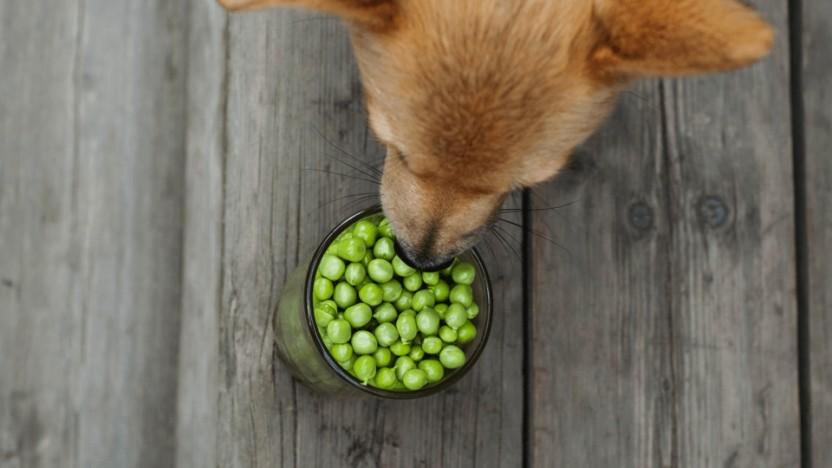 Vegetable Origin
Vegetable Origin
2+ MIN
13/06/2022
Reformulation of Petfood diets with AMN Pea Concentrates
The quality of ingredients and type of protein used in pet foods are very important factors for pet owners when considering selecting a diet. Protein is an essential nutrient which one requires great attention in terms of quality, quantity and indeed, sustainability. Sustainability has remarkably emerged in the consumer awareness. 'The food that is good for our Pets, it should also be good for the planet'.
Pea concentrates represent excellent alternative ingredients in reformulation. Pea concentrates are clean label and sustainable sources of protein, starch and dietary fiber, as well as essential minerals and vitamins.
Why choosing Pea Concentrates? – Sustainability matters
Pet owners are concerned about the welfare of their pets but also about the environment by placing emphasis on traits like kindness and compassion. Pets have an important role in society, and this fact has been even more noticeable after the COVID pandemic.
There is indeed an important driving demand for ingredients in pet food, which places social and corporate responsibility at the forefront of our strategy.
Our pea ingredients are excellent ingredients which fits nowadays` and future trends to support claims on health, clean label, functional and sustainable pet food.
At the same time, the combined use of cereals and pea concentrate matches the amino acid profile in Petfood formulation. This is mainly due to peas are high in amino acid lysine and arginine while are low in sulfur containing amino acids, such as cysteine and methionine; while cereals such as rice, corn and wheat have higher content of sulfur containing amino acids and having a lower lysine content.
Please, contact us for information on reformulation of Petfood diets at https://www.am-nutrition.no/pet-food/
by Laura Gil Martens, Chief Nutritionist, R&D Manager
AM Nutrition
 Cereals
Cereals
5+ MIN
10/06/2022
Realizing sustainable pet food using bread meal through co-creation
A successful example is Bubeck Petfood that created a highly nutritional, digestible and palatable dog biscuit using sustainable bread meal, developed by FeedValid and provided by IQI Trusted Petfood Ingredients. FeedValid from the Netherlands is the market leader in western-Europe for valorizing raw materials and process side streams from the human food industry into high-quality, innovative ingredients for IQI the compound feed, pet food and aquaculture industries. IQI Trusted Petfood Ingredients and FeedValid have a longstanding partnership, going back well over 25 years, for the supply of sustainable high-quality pet food ingredients, including dried potato and flakes. IQI has been a key provider of these and other ingredients to Bubeck Petfood in Germany since 2005. This was the perfect foundation for co-creating a new sustainable dog biscuit. Bread meal as a sustainable ingredient Alexander Romme, chief material management officer at FeedValid, says: 'Working within a relationship based on trust and openness, FeedValid and IQI regularly explore the possibilities of our new sustainable product developments for application in pet food. IQI has a lot of expertise, knowledge and feeling for the trends and developments in the pet food market, such as the increasing interest in sustainability. Since we process high volumes of bread products from side streams of the bread production and processing industry, we looked into implementing bread meal as a high-quality pet food ingredient.' FeedValid selects specific high-quality mono-streams of bread products to valorize into high-quality ingredients. Their fully automated equipment is integrated into the production line, creating a closed circuit for automatically separating mono-streams of bread products from the production process. FeedValid collects their fully enclosed containers on a daily basis for further processing of the bread products through drying and granulation into bread meal with a consistent high quality and structure – essential for application in pet food. Bread meal can be applied as an alternative to conventional starch sources to reduce the average carbon foot print of pet food. It has a high degree of gelatinization and high water binding capacity, which makes it highly suitable for application in snacks and treats, cold pelleted pet foods, and as an addition to fresh meat slurries to the extruder. For use in cold pelleted pet food, bread meal actually has a positive effect on energy use in a pellet press with equal pellet quality. Since bread meal originates from bread products, made of flour from the inside of the wheat grain, there is a reduced risk of mycotoxin compared to using fresh raw wheat, making it a very safe ingredient. IQI Trusted Petfood Ingredients has exclusive rights to sell the bread meal to global pet food manufacturers. When IQI's sales manager Yvette Gerritsen suggested bread meal as a sustainable dog food ingredient to Kai Nagel, managing director at Bubeck Petfood, she immediately struck a chord. Creating healthy and palatable dog food Founded in 1893 by Robert Bubeck and his son Wilhelm, Bubeck Petfood specializes in dog snacks and treats. Kai Nagel, 3rd generation of the Nagel family that has owned Bubeck since 1982, says: 'Bread meal is so interesting to me because the use of left-over bread goes back to the beginning of the dog food industry. In the 1890s, dogs generally ate leftovers from the table, but dog breeders and big companies with security dogs needed a more consistent type of dog food. Bubeck created the very first dog biscuit from leftover bread that was dried, pressed into shape with a little bit of meat in the middle, and then baked. Thereby creating a sustainable type of dog food with good digestibility, consistency, and a long shelf life.' Although in the past decades the majority of pet food producers switched to extruding dog food, Bubeck has remained true to the baking process. Kai Nagel: 'While this is a bit more cost and labor intensive, baking greatly improves the nutritional properties of wheat by increasing the digestibility of starches and proteins, creating a very good and healthy energy source for the dog. The grain-free trend that started 10 years ago suggests that wheat would somehow be bad for dogs, but problems like allergic reactions are only caused by products that have not been properly processed. Using a pre-cooked and pregelatinized product, such as bread meal, and baking it again, improves the digestibility and palatability even further. Dogs like the sugary sweet smell of baked dogfood, so there is no need to add artificial substances.' Exploring new possibilities Kai Nagel: 'We have a very good and longstanding relationship with IQI, and trust them for the reliable supply of high-quality ingredients, which enables us to explore new ideas together. IQI regularly provides us with product samples to test and create new products. If this is successful, we make dog food samples to give to our customers to see what they think.' This kind of co-creation resulted, for example, in Bubeck becoming the first pet food manufacturer using IQI's Miscanthus fiber, also known as Elephant grass, as a sustainable source of dietary fiber. As key provider to Bubeck, IQI Trusted Petfood Ingredients organized with FeedValid to provde a sample of bread meal to Bubeck for testing purposes. The first tests were very positive, but the sample was too coarse for the sieves of Bubeck's production facility, so FeedValid in response change the grind size to create a finer product. After a little technical finetuning, this second sample was successfully processed by Bubeck. Apart from the grind size, using bread meal or fresh raw wheat makes no difference for processing. In response, Bubeck has signed a contract with IQI for the supply of bread meal. Sustainability is the future As the first product created with bread meal, in 2022 Bubeck will introduce a big baked dog biscuit. After this more products based on bread meal will follow. Kai Nagel: 'Our aim at Bubeck is to create more healthy dog food with excellent digestibility and palatability in a more sustainable way. It is in our DNA to re-use food from human consumption and prevent waste. This has been the natural way for thousands of years with dogs eating our high-quality leftovers. By using bread meal we don't compete with the vulnerable resources for human food production.' Alexander Romme: 'I expect the demand for sustainable ingredients to accelerate in the coming years, as the pressure increases to realize the Paris Agreement. As a result, there will be a shift to using other kinds of more sustainable ingredients across different industries, including pet food. The pet food industry is moving towards more and more use of sustainable, plant-based and non-GMO ingredients. Streams of valorized high-quality ingredients, such as bread meal, will help to realize the climate ambitions.' Kai Nagel: 'As Bubeck we have now come full circle by re-introducing a type of sustainable production that came natural to our company's founders. When Robert Bubeck and his son Wilhelm started out almost 130 years ago, not wasting food was an economic necessity, now it's essential to save our planet.' Product characteristics By IQI Trusted Petfood Ingredients.
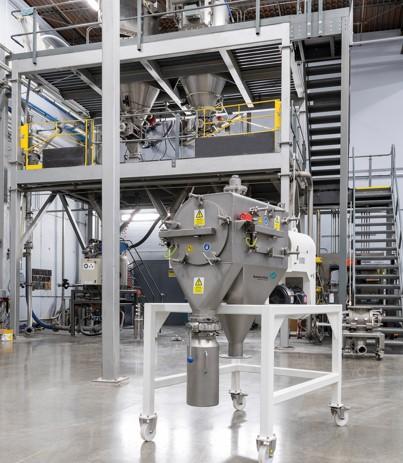 Manufacturing Process
Manufacturing Process
2+ MIN
09/06/2022
Cantilever Shaft Design for Kemutec KEK® Centrifugal Sifters Improves Powder Processing Hygiene and Ease of Operation
Innovative design, which has been implemented on virtually every model of KEK® Centrifugal Sifters, features an easy-to-remove hygienic screen basket and paddle screw assembly, a hinged oversize end door, and bolted flanges for dust-tight operation. The sifters also operate quietly without vibration. The cantilevered design improves efficiency with its clean, simple features that are operator friendly – no tools are required for stripping down and cleaning – along with the time saved during an inspection, cleaning, and maintenance. The units also contain easily removable sifter screens for inspection and cleaning, and easy access via the oversize end door, which opens in seconds. There is zero leakage or contamination from the oversize end door. The sifters are ideal for feedstock policing, scalping, dedusting, conditioning, and deagglomerating; but can also be used in unique applications, such as de-packing, fruit dumping, inline sieving, gas purging, and explosion containment. Pending suitability, these sifters are available with white nylon sifting screens, stainless steel wedge wire, or woven wire screens. They are built to handle the most arduous, heavy-duty applications where access for maintenance is severely limited, such as toxic and radioactive processes. Also, optional screen protectors eject incoming extraneous objects, which could damage the sieving mesh. For further improvement of the sifter's hygienic capabilities, the units can also include clean-in-place spray facilities, inlet section access door, and additional inspection doors on the sifter body. The design is also available on KEK® models K300C, K650C, K800C, and K1150C (the largest cantilevered sifter with capacities of up to 80 tons per hour). "Schenck Process has established itself as the bulk materials, handling providers trust most throughout the process industries by creating a culture of constant innovation, and always looking at how our extensive product portfolio can better serve customers", said Karin Galloway, Executive Director of Sales – Kemutec North America. "The Kemutec KEK® Centrifugal Sifter line with unparalleled hygienic and ease-of-use standards exemplify that commitment." To view KEK Centrifugal Sifters in action, click HERE Source: Schenck Process
 Market Information
Market Information
1+ MIN
08/06/2022
Humanisation underpins the future of pet food
COVID-19 has accelerated the long evolving concept of humanisation, whereby pet food trends mirror human food trends such as sustainability and health. As more pet owners become aware of the carbon footprint of their pets, launch activity in pet food is focusing more overtly on sustainability. Pet food brands are responding accordingly with environmentally friendly packaging, as well as eco-friendly ingredients such as insect protein. In line with monitoring their own health, consumers are also keen to improve pet health, with pet owners turning to supplements for added nutritional benefits. This article explores how the pet food world will evolve in the near future and beyond by identifying opportunities that matter for the industry. Keep reading...
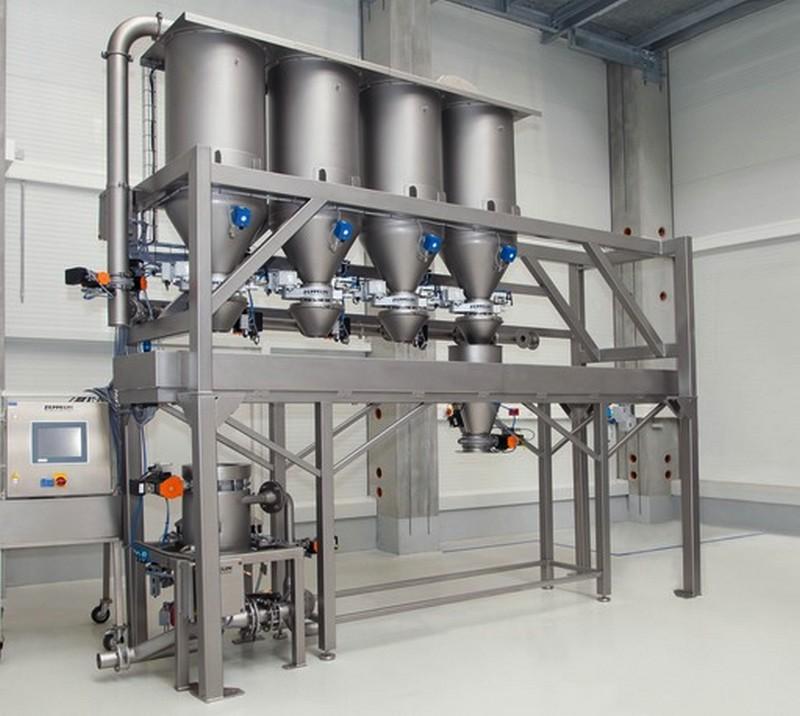 Dosing
Dosing
5+ MIN
08/06/2022
Efficient and Safe Production of Pet Food
The production of pet food requires efficient production lines with high availability rates and reproducible quality. This only works with optimal system technology and processes that are designed to meet the specific requirements of the product in question. This article shows what else is important.
Pets have not only been popular companions since the Corona pandemic; in Germany alone, almost every second household has some sort of pet. As a result, the demand for high-quality pet food is increasing, and this is happening worldwide. 'The USA, Europe and Asia are still growing markets in terms of pet food, and this means that we are in demand as plant manufacturers,' says Ingo Pütz, responsible for global sales at Zeppelin Systems in Rödermark, describing the market situation.
In addition, the technological demands on plants and components are growing, as Pütz explains, 'Pet food formulas now consist of 20 to 50 different raw materials, each of which has its own unique properties.' This can be extruded material that is mixed in particularly gently or a moisture-sensitive raw material that has to be conveyed in a very dry state. Smooth production therefore requires not only knowing the properties of a wide range of products, but also understanding the process down to the last detail. 'Ultimately, the consumer must be able to rely on the feed always having the exact composition as well as the same shape and consistency. The feed must neither stick nor crumble,' says Pütz, describing the difficult balance.
Flexibility in plants is a necessity
In general, the production quality requirements for pet food are similar to those of human food. Among other things, this means eliminating or minimizing cross-contamination, easy to clean, maintaining clean production and compliance with hygiene standards. And as with food for humans, pet food is subject to special scrutiny and requires, for example, extremely accurate measurement technology. Moreover, in pet food, new formula concepts are being developed to meet the needs of individual animals, whether young, old, prone to obesity, wheat intolerant, etc.
At the same time, manufacturers must be able to deal with changing raw materials – for example, some raw materials used to be available as powders, but are now marketed as granules. Raw materials may also vary from region to region.
These variations can, for example, affect different bulk densities, which in turn affects handling. Manufacturers therefore require a very high degree of flexibility in their plants. It must be possible to adapt them without major conversions. High reliability and availability of the plants, which run around the clock, are a given.
Coordinated plant processes
Zeppelin Systems accompanies almost every processing stage in pet food production. This starts with raw material intake, through filling into the silos, grinding technology, up to recipe-accurate dosing including inline screening machines upstream of the mixers and gentle dense phase conveying. Drying and coating processes have to be integrated just as much as systems
for dust removal, temperature control, quality assurance measures, and concepts for explosion protection. A striking feature of developments in recent years: Plants are being operated ever closer to their peak performance without diminishing any accuracy. 'This can only be achieved by keeping an eye on the entire raw material handling process. We master all process steps and the respective process and measurement technology. That's why we can offer comprehensive, perfectly coordinated solutions from a single source,' Pütz explains further.
Kibbles without break
At first glance, the individual process steps do not appear complicated, yet the processes are changing. For example, gentle pneumatic conveying of dry feed now plays an increasingly important role. Neither the animal lover nor the producer wants to find crumbs in the feed. With Dense-Tec conveying and sometimes extended lines, conveying succeeds without destroying the structure of the raw materials. Dense-Tec is mainly used in the pet food industry as a continuous conveying system, because the individual process steps, such as cooling or coating, are also mainly carried out continuously.
Precise dosing of even the smallest quantities
When weighing and dosing very small quantities, such as vitamins, components in the 2-3 kilogram range have to be added evenly distributed throughout mixtures weighing several tons. 'We have developed innovative manual and automated solutions especially for these small components,' reports Pütz. For example, Zeppelin Systems offers customized solutions ranging from components for batch weighing to differential scales including controls. For handling liquids, on the other hand, volumetric systems or gravimetrically operating components such as liquid scales and mass flow meters are used. 'It is crucial that the dosing and weighing is done accurately contamination-free,' Pütz lists additionally. 'After all, ingredients are being scrutinized more and more critically by consumers.'
High demands on hygiene and quality
Hygiene requirements have also increased in the pet food sector and are now oriented toward the food industry. 'For example, we have long relied only on stainless steel in our plants,' says Pütz 'Batches have to be traceable just as they are in human food. This is where the process management system we developed helps.' This logs every change in the recipe and allows all raw materials supplied and batches delivered to be traced. All production data, batch records, etc. are archived and can be retrieved at any time. Accordingly, there is greater focus on control, automation and documentation. This gives the consumer peace of mind.
Summary and outlook
Regional differences require country- specific solutions. Since production follows the customer, plant engineering know-how is needed directly on site. Zeppelin Systems is globally oriented, which ensures nationwide support. Moreover, digital services, such as remote access to the plants, are now part of everyday life.
Another topic of concern to the pet food industry is energy use and efficiency levels. This is particularly important for large plants with higher conveying capacities, for example, 40 to 60 tons per hour. 'We supply solutions that allow more output from the plants. For example, we replace mechanical conveyors with pneumatic ones because they deliver faster and display higher performance with larger volumes. They also work more energy- efficiently, can cover greater distances, and require less maintenance,' says Pütz, listing one example, but concluding with a completely different yet decisive factor for success: 'Our customers don't really care how their process works; they want process reliability and high plant availability. We ensure this with on-site service, but also with intelligent automation technology and a wide range of sensors that safeguard the process.
by Ingo Pütz ist General Manager Sales Food Processing Plant at Zeppelin Systems GmbH
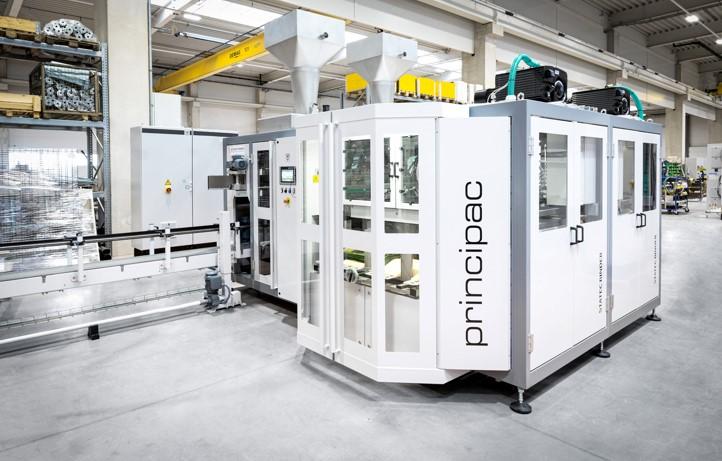 Packaging
Packaging
2+ MIN
07/06/2022
What´s behind the bags for our loved dog, cat or horse?
But there is a lot more behind it. The process alone, from filling the animal food bags to the actual delivery of the goods can be very extensive. At STATEC BINDER, we know perfectly what it means, when it comes to packaging and palletizing - because that is exactly our daily business. With over 40 years of experience in the field of packaging and palletizing technology and over 1,600 successfully installed machines worldwide, we can confidently say that we provide our customers with the best possible know-how and advice. For many customers, weighing, packing, sealing, and delivering their actual goods on a pallet is a very complex process, especially when it comes to working with a high number of bags per hour. But with your reliable partner STATEC BINDER at your side, this section of the production process will be successful. Our wide product portfolio allows us to meet the needs of our customers in a variety of industries while also offering an excellent customer service program. On the one hand, there is the PRINCIPAC, one of the world´s fastest bagging machines with up to 2,000 bags per hour; and on the other hand, the CERTOPAC, which is ideal for bagging animal feed up to 1,500 bags per hour. The ACROPAC model was developed by STATEC BINDER for small and medium-sized operations with lower production capacities and is suitable for bagging up to 600 bags per hour. Our high-performance palletizer PRINCIPAL-H, with a capacity of up 2,400 bags per hour, completes an all-round high-quality and efficient palletizing process with a nice and stable layer pattern. With our robotic palletizer PRINIPAL-R, of a high-tech version, up to 1,400 bags or boxes per hour can be achieved. With STATEC BINDER, you stay on the sunny side - because as a reliable partner, we faithfully support our customers even after the systems have been installed. With the 1-6-11 program, we have made it our promise that our customers will receive excellent after-sales support. Perfectly coordinated service appointments and spare parts deliveries, customer training, the Remote Maintenance System & Support, and always being at the state-of-the-art through optimization & modernization round off our customer service. At STATEC BINDER, we place great emphasis on customer-oriented solutions, excellent advice, flexibility, and know-how. Together with our customers, we look for custom-fit solutions for their circumstances and their products. As an international packaging and palletizing specialist based in Austria, we are here for our customersaround the globe. Are you interested? You can find more information about our product portfolio or our company HERE By Statec Binder Source : All Pet Food
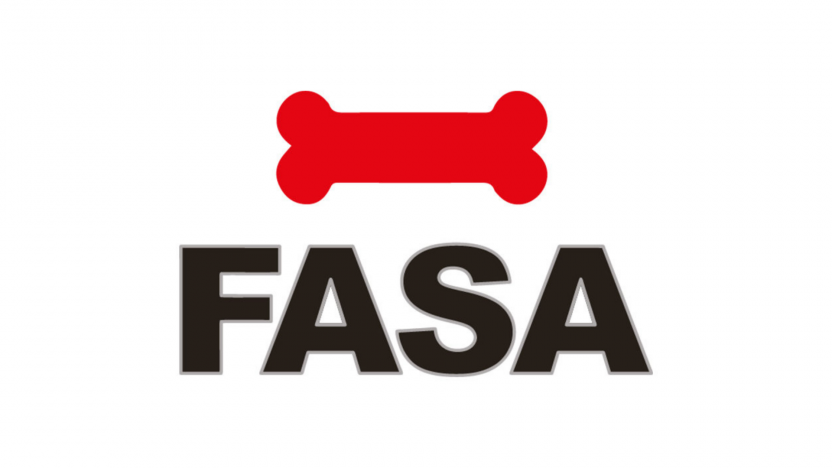 Market Information
Market Information
1+ MIN
03/06/2022
Darling Ingredients expands in Latin America with acquisition of rendering company
Darling Ingredients, focused on creating sustainable food and fuel solutions from organic by-products, believes that Brazil represents a 'premier' location for rendering growth and that it is expected to take on a bigger role in the world's meat production in the near future. Darling Ingredients Chairman and CEO Randall Stuewe said that FASA Group will supplement Darling Ingredient's global supply of waste fats, "making it a leader in the supply of low carbon waste fats and oils in North and South America to be used in the production of renewable diesel.". The acquisition price amounts to approximately R$2.8 billion ($560 million / €537 million) and the transaction is expected to close by the end of 2022. It is subject to post-closing adjustments and a contingent payment based on future earnings growth. FASA Group is among the largest in the rendering industry in South America. The company was created in 2010 by the merger of Faros do Brasil Group, one of the largest companies in the animal recycling segment in Brazil, and SAPI Group, which has been providing rendering services to the agri-food industry in Italy for over 50 years. Darling Ingredients operates 250 plants in 17 countries and repurposes nearly 10% of the world's meat industry waste streams into value-added products. They are the only publicly-traded company in its segment with 10,000 employees. Source: Global Pets
 Manufacturing Process
Manufacturing Process
4+ MIN
02/06/2022
Remote access for industrial control systems
This tool is particularly helpful in servicing control systems through a network connection. By connecting to the system's programmable logic controllers (PLC), Human Machine Interface (HMI), and other Ethernet compatible devices, integrators can efficiently monitor, troubleshoot, and fix an issue without physically traveling to the site. Employers can control many quality services via remote access, such as: troubleshooting, remote startup, remote monitoring, software upgrades or additions, proportional-integral-derivative (PID) tuning (adjust the PID controller), User Interface (UI) additions, and other improvements to the customer's automated system. Service technicians have access to tools and software solutions that many manufacturing plants may not have, and these can be utilized remotely to enhance the service experience. This article discusses best practices for establishing remote access, services provided using a remote connection, and help determine if remote access is correct for your plant. Best practices for establishing Remote Access When establishing remote access to a plant's control system for the first time, there are several guidelines to follow from both the integrator and the plant's side. The first step to connecting remotely is to obtain permission from the plant's IT department to access the virtual private network (VPN). The integrator provides the plant's IT department with a list of authorized technicians who will provide service and support for the plant. The plant's IT department will set up user accounts for those authorized technicians. If applicable, non-disclosure agreements will be signed. Safeguards for a secure connection Integrators use a VPN for connecting to the plant's control system Plant IT has an isolated network for the VPN Routine system backups Utilize virtual machines (VM) Remote Access – Technical Service and Support A major benefit for establishing remote access to a plant's control system is the ability to quickly be connected for service and support. In the event there is a problem with the control system, such as a production sequence is out of order, a burner is not reaching a high enough temperature, or a conveyor is not moving fast enough, plant maintenance personnel can contact an integrator for technical support. A service technician is speaking directly with the plant personnel. By working together, problems are solved faster, immediate feedback is provided, questions or concerns are addressed, and this is an opportune time to provide plant personnel some system training. With remote access available, service technicians are able to support plants quickly and efficiently. With prior remote access established, a technician can be connected to a plant within 15 minutes of calling about an issue. This quick connection time allows for troubleshooting to begin immediately, while reducing plant down-time. Remote access allows the service technician to monitor the system live to catch any intermittent problems. Control Systems can be remotely accessed and watched for a specific problem or issue over a number of hours or days. Then when the problem occurs, the service technician can isolate what caused the problem, what conditions were present when the issue occurred and provide a solution. Another benefit to remote access is being flexible within the time frame of system maintenance. Service can be provided around rigid time and production schedules, as remote access can occur at any time during the day. This eliminates waiting until regular business hours to contact support and then having to make travel arrangement to get a technician on site. Remote access can also serve as an extension of the customer's maintenance and continual improvement departments. Remote Access – Control System Startup Some Control System modification and addition projects can be started up remotely. The benefits to a remote startup are similar to remote access service. Time (travel and onsite) Money (costs of travel, rental, accommodations, etc.) Resources Help can be offered immediately, the customer only has to pay for labor time to fix an issue, fixes can be provided around rigid production schedules, and additional resources can be utilized. Remote Access can also be used in conjunction with onsite startups to provide additional training and which helps build on more complex ideas and unique operating situations. And lastly, with the restrictions of travel and health concerns surrounding Covid 19, quarantine restrictions and safety protocols can be eliminated if remote access is used. Remote Access can provide a quick, affordable solution for control system maintenance. Remote Access saves travel time, accommodation costs, and costs associated with down-time. Remote access provides the customer with immediate help and resources any time day or night and remote access can also be used to monitor intermittent problems. Remote Access can be utilized not only for start-ups, service, and maintenance, but operational training as well. NorthWind's Service Team provides remote service and support for all control system issues. Form more information about NorthWind click HERE. Author: Jake Taylor - Service Manager Source: NorthWind's Technical Services
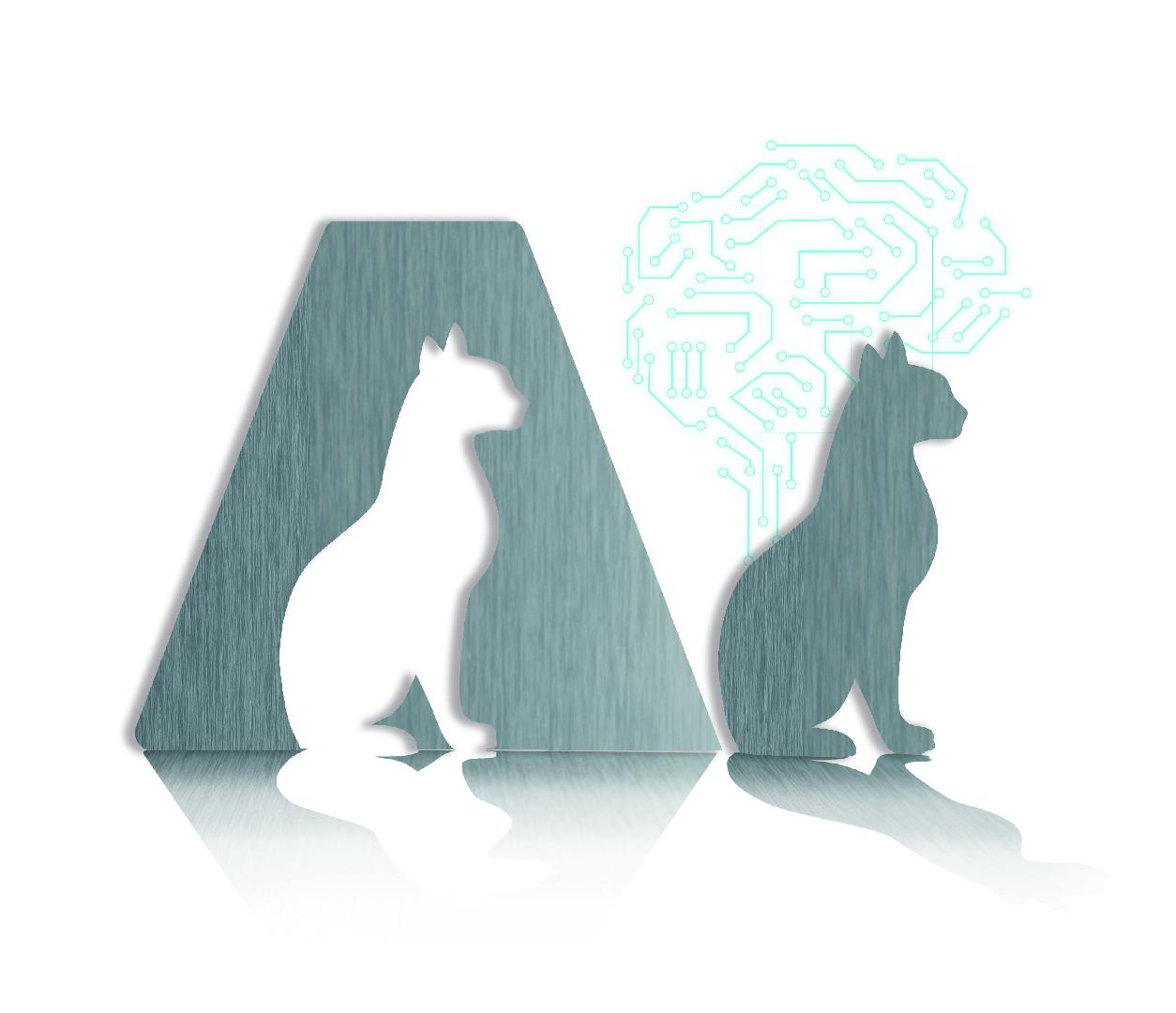 Trends
Trends
4+ MIN
31/05/2022
Por Luciana Chippano
Artificial intelligence in the pet industry
Artificial intelligence and robotics have the potential to revolutionize the entire pet industry, from food processing to healthcare and disease prevention. Let's delve a little deeper into production and preventive medicine, the sectors with the highest implementation of IA today. IA in food production Automation, artificial intelligence and robotics are becoming increasingly important in food and beverage processing, both for humans and pets. Although the main objective is not to incorporate AI in certain instances of the process, but to integrate it systematically and comprehensively into all the operations of the production process, the advances and tests go, logically, by sectors: Quality control The use of robots in the palletizing area is not new. However, AI is breaking into these operations providing the possibility of improving quality inspections. For example, a robotic palletizer with a vision system allows better detection of defective or poor-quality food batches, allowing the process to be stopped before it is finished and thus saving time, costs and efforts. If we talk about quality control, any type product classification is complex and necessary. Normally, there would be one person doing these inspections, but now we have vision systems that can detect anomalies and take action to remove defective products or help employees making better decisions. Disease predictive models The pet care industry is moving toward prediction: instead of tackling diseases once they occur, there is a growing focus on extending pet health and preventing health problems. Currently, we can collect a wealth of data about pets from veterinary medical records, diets, daily activity, and even genetic makeup. This contains hidden patterns that, if connected, lead us to a better understanding of the behavior and responses of animals to certain stimuli. Artificial intelligence allows us to cross and review these patterns efficiently and effectively. In a way, what it does is unlock the latent power of the data of one and millions of pets. The implementation of AI seeks not only to understand how the genetics and behavior of a pet can reveal valuable information about its general health but also the collective construction: crossing patterns, behaviors, and analysis, we will find new ways to assist animals in the process of development of a problem or disease. Case studies For example, in the case of scratching dogs, AI can be used to find movement patterns in dogs diagnosed with a skin condition and detect, in advance, when they will start scratching more often, through activity monitoring with a sensor on the necklace. The same technology works to detect when a dog starts to develop joint problems like osteoarthritis. AI can be used to identify subtle variations with gait activity tracking devices to identify possible arthritis preemptively or, at least, earlier in the disease development process. In the case of obesity, the extra challenge is that the studies and controls carried out by veterinarians are not recorded uniformly: sometimes they remain as notes, sometimes as a body condition score, etc., which makes it difficult to obtain an adequate set of standards for pet weight and body condition scores in a large sample. To address this, Mars Petcare developed a natural language processing (NLP) algorithm for veterinary hospitals that efficiently extract this information. The model has helped detect 30% more cases of obese pets and identify a specific problem with overweight and obesity in cats. The system allows veterinarians to explore treatment pathways after diagnosis while assessing which interventions were most successful and make the best decision for each particular case. Because many diseases have better outcomes if detected and treated earlier, predictive models have the potential to be transformative for veterinary care. However, the goal transcends prevention: if we at least manage to treat it in advance or stop part of its development, we are already gaining more quality life time. Pet wearable devices and IA Innovation We are already seeing an explosion of AI tools in the pet industry, and it will continue that way for some years to come. The new generation of wearable devices, now for pets, uses AI to interpret data. A clear demonstration of evolution and innovation is that of activity trackers. These are no longer limited to tracking the number of steps a pet has taken; today they seek to identify behavior patterns that may impact health. For example, monitoring animals that scratch and lick can help owners and veterinarians identify an underlying cause when these behaviors increase or change. In 2022, it is difficult and even illogical to think that the growing industry, such as pets, will not be transformed thanks to artificial intelligence. In our case, we will see more and more improvements and implementation in veterinary care, diagnostics, and pet food production. Without a doubt, we can affirm that we are moving towards a reality in which AI puts at the center what should be in it: food manufacturers, owners, and veterinarians at the service of artificial intelligence in pursuit of care and improvement quality life of all pets. After all, anything that involves nutrition and care improvement means working towards longer, happier, and healthier pet lives. Source: All Pet Food
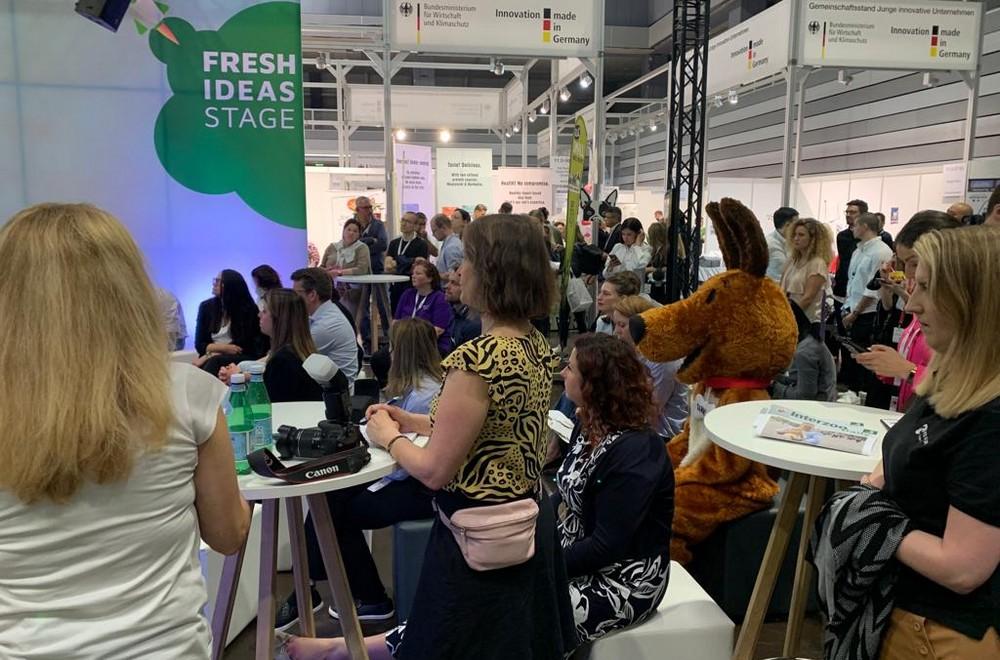 Manufacturing Process
Manufacturing Process
3+ MIN
30/05/2022
A Global and Diverse Market at Interzoo 2022
One example of this was the presentation offered by Amanda Simoes, who revealed that around 22 % of dogs and 37 % of cats in Brazilian households were purchased during covid 19 pandemic. She predicts that by 2026 demanding for pet Food and pet care products in Brazil will rise 140 percent. Another country session showed the west European market is continiuing to offer lots of opportunities. Aleksandras Becevicius of Euromonitor International explained how the market developed during the pandemic and how it's now doing during the conflict in Ukraine . He explained the the premium food sector had developed positivey, however for the next five years will remain the meium-priced segment. The analyst also reports an upswing in online sales during the pandemic, and he forcasted further growth in this market altought the products and services would change and adapt to the post pandemic period once again. Aleksandras also provided a report of the scandinavian pet market. According to Euromonitor , this market is growing faster than in other European country and its proving to be a very resistant to any crises. He believes exeptional trends are the growing segment of premium products, as well as owner's trends to hiuminise their pets. Smart, Healthie and Organic – An Industry keeping peace Over the past few years, trends such us digitalization, preminization and sustainability have gone mainstream and let to huge growth in manufacturer's ranges. At Interzoo, established brands and startups were present, and neary 4000 new products and highlights for dogs, cats, small mammals and some other creatures. Current lifestyles and humanization of pets has led to new types of pet Food and health. Pet Health is increasingly becoming a key issue and custumers also want ingredients and packaging to be sustainable. Consequently the market has new pet food products with unusual recipes that combine scientific findings with sustainability and animal health. Not all dogs are the same and that goes for cats as well. The importance of alternative source of proteins, higher welfare meat and organic vegetables is growing. Artificial additives are no longer required, as pets also have a sensitive digestive system. Diets are becoming more viried. In addition to wet and dry food, there is a growing trend for ice cream and a mixed of meat, fruit and vegetables. As a result, even animals with dental problems can eat food without experiencing any pain. Special inmmune system boosters following illness or very stressful periods are also available. Vitamins , immunoglobulins or hemp promise to reach our pet´s batteries. What do digitalisation and technology have to do with keeping pets? Pioneering creative companies are developing digital solutions to make the lives of man and pet easier. For example, there are automatic app-based feeders with cod packs that dispense meals for cats alone at home. Consequently , pets can be looked after just as professionally as humans. Consumers have long realized organic products don´t mean going without. The pet market is also reflecting this trend more and more. Regionally sourced ingredients and short transportation routes in the name of sustainability are a real benefit. Dog harneses made of natural materials , microbiological odour and stain removers , extra -light paper filters , recycling food waste and turning it into pet food are all planet friendly options and improve quality of life. by All Pet Food
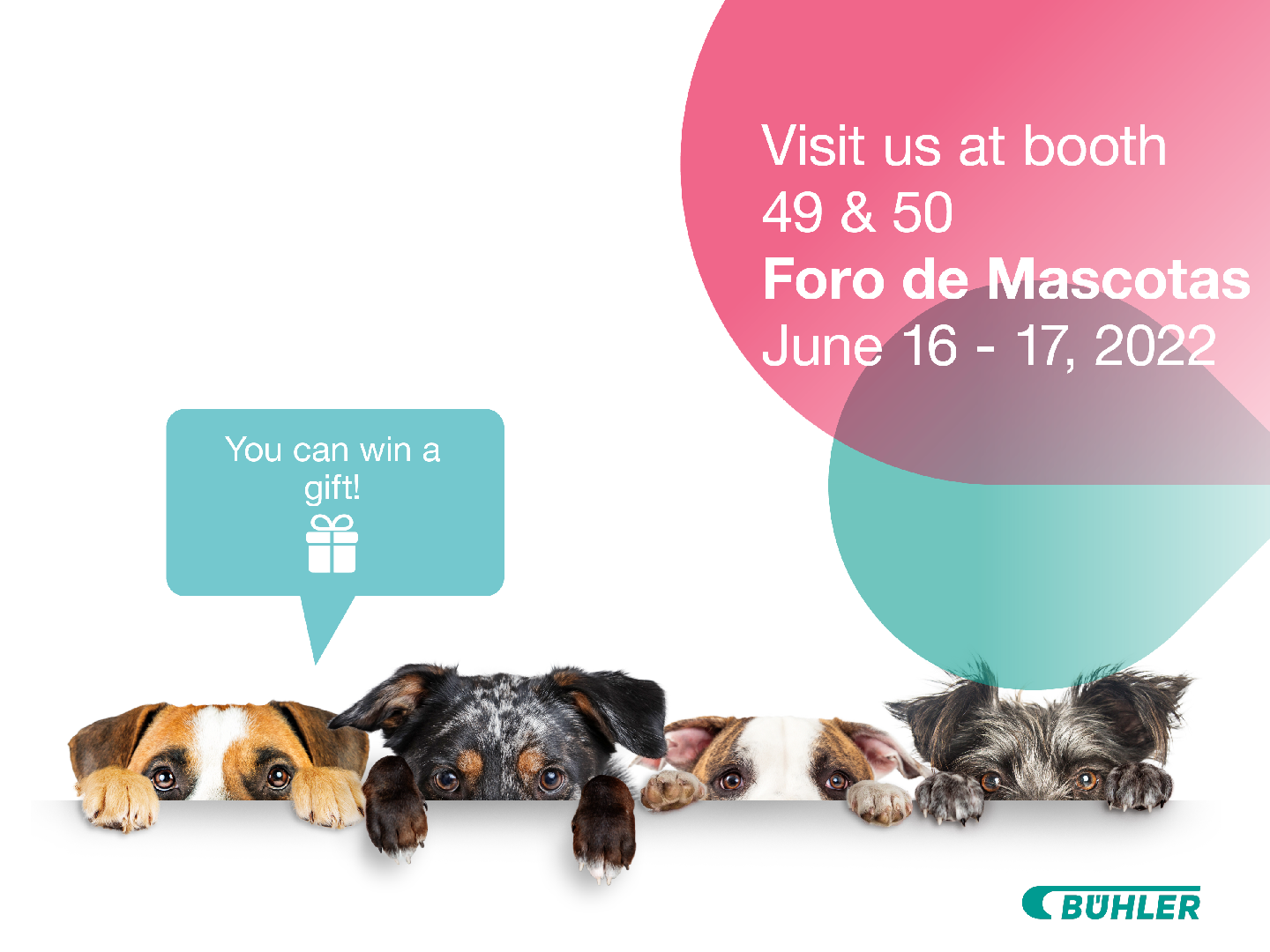 Market Information
Market Information
1+ MIN
30/05/2022
Bühler invites you to participate in an event focused on trends in pet food industry!
Foro de Mascotas, June 16 & 17, Expo Guadalajara,Guadalajara, Jalisco. Bühler invest part of its profits in research and development of solutions that accomplish the needs of their clients, developing versatile, flexible, and automated solutions to produce final products with different shapes, sizes, moisture levels and more. In recent times, the food industry has tightened its food safety policies, without leaving behind pet food and aqua feed industries, driven mainly by more informed consumers who became more demanding in the quality of the products they buy. During this event you will be able to enjoy talks focused on the main trends, best practices, and the possibility to meet different suppliers of the industry. Show you some of our Products Multi-impact technology Single screw extruder SmartFeed Dryer Source: Bühler Group
 Market Information
Market Information
2+ MIN
24/05/2022
Kemin Nutrisurance Europe at Interzoo
Nutrisurance Europe, the pet food and rendering technologies division of Kemin Industries, is exhibiting at Interzoo at Hall 12.0 Booth 310. With specialized expertise in oxidation control, food safety, palatability and nutrition, Kemin's team of technical experts, application engineers and scientists provide custom support and industry-leading solutions for pet food manufacturers and renderers. According to Innova Database fish flavor and protein are increasing in popularity, in the last 3 years; among all pet food launches in the EMEA region, salmon represented the first fish protein choice, with CAGR of 72% in dog and 16% in cat. With pets' health and owners happiness in mind we developed four new products dedicated to the EMEA market: PALASURANCE® A DC70-380 Liquid: A salmon-based liquid canine and feline palatability enhancer specifically developed to improve the total performance of super premium quality dog and cat food. Can replace animal-based palatants to help with stressed animal supply chain and simplify warehouse management for pet food producers. PALASURANCE® C75-90 Dry: A dry feline palatability enhancer with lower phosphorus content compared to the market leading solution, suitable to improve performance of super-premium quality cat food and treats. PARAMEGA™ IP RL Liquid FG: This natural antioxidant provides optimal stabilization of highly unsaturated fats, such as vegetable and marine oils, providing longer shelf-life to seasonal ingredients. ALLINSUR™ FS-11 Dry: This antimicrobial provides optimal protection for rendering and raw food ingredients. Its formulation without formic and propionic acid delivers an effective treatment without risking a negative impact on pet food palatability and may reduce the intensity of noxious odors within the facility. All products are supported by Kemin's quality and manufacturing excellence as well as our technical, laboratory and application services: Customer Laboratory Services (CLS) supports customers in developing new products, troubleshooting stability and palatability challenges, and effectively utilizing Kemin products. Kemin Application Solutions (KAS) helps design, install, maintain, and optimize customer application equipment. Technical Services Managers (TSMs) leverage extensive pet food industry experience to troubleshoot and find solutions for product-related issues throughout every step of the pet food value chain. By All Pet Food
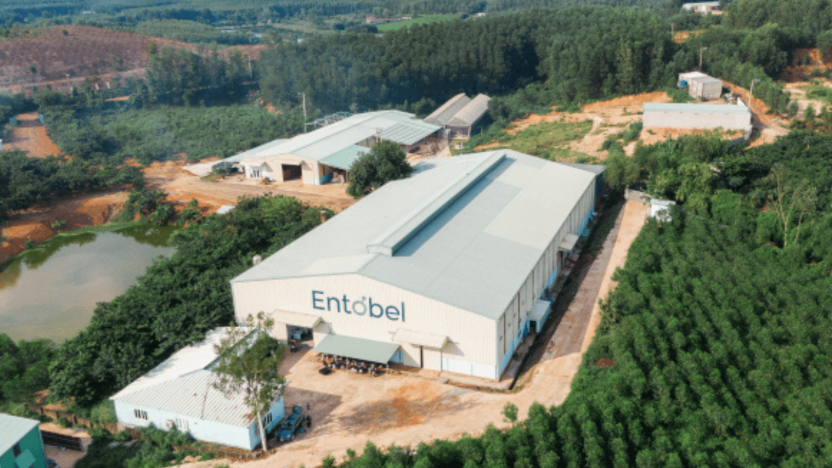 Market Information
Market Information
1+ MIN
23/05/2022
Entobel completes $30M investment round
Entobel is working on new product developments in order to ensure its market relevance and competitiveness. Co-founders Gaetan Crielaard and Alexandre de Caters said that capital efficiency and robust technology 'is the right approach to massive scaling up.' The company produces insect-based ingredients from Black Soldier Flies in various industries including the animal feed, pet food, and fertilizer industry. Currently, it has 3 main products in its portfolio: insect meal, insect oil, and organic fertilizer. The fund was led by Mekong Enterprise Fund IV ($25M /€23.8M) and Dragon Capital ($5M / €4.7M). Feed additive research company Adisseo and Entobel recently agreed to initiate an R&D collaboration to better understand and enhance insect rearing performance and the nutritional requirement of insects.
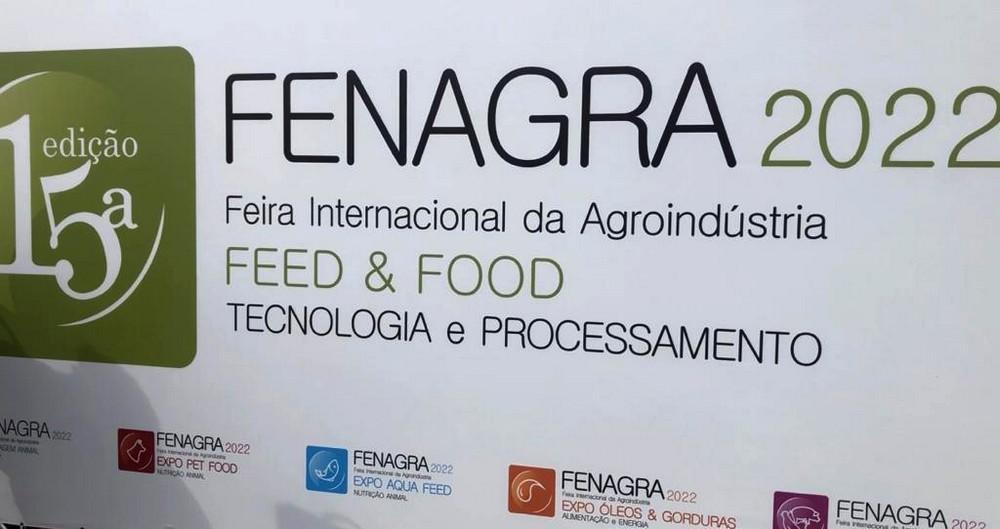 Market Information
Market Information
2+ MIN
20/05/2022
FENAGRA concludes with a record of Exhibitors and Visitors
With a record number of visitors, exhibitors and speakers, we were welcomed by one of the most important trade shows in the Industry, which undoubtedly embrace the most important market in this región …the Brazilian market.
Upon arriving at the Don Pedro Exhibition Center, located on the outskirts of the marvelous Campinas, in the state of Sao Paulo, the first thing we could see was the joy of all the industry professionals at meeting again at a Congress of such scale. Later we made sure that the entrance area was outside of the venue, and it happend due to the increase in the exhibition area for this new edition.
Once entering, the first thing that jumped out was the good energy and vibe that existed among the exhibitors and visitors, who didn´t hesitate to sit down and begin to draw commercial strategies, research and the creation of new projects.The technical and conference area was another strong point with presentations of high technical and professional content, which were attended by professionals from all over the region.
All Pet Food, of course, was present as an exhibitor, accompanying its clients, potential clients and the industry in general, and of course, distributing the leading publication All Pet Food Magazine and generating new alliances for the near future.
CIPAL 2022, The Latin America Pet Food Industry Congress organized by All Pet Food in Buenos Aires, Argentina on September 28th and 29ht, 2022, which covers the entire Latin American market, turned out to be of great interest for suppliers of the Industry, as well as for professionals and pet food producers that came together at FENAGRA.
This is true to the point CIPAL 2022 already has a large number of confirmed companies, as well as speakers and professionals from both Brazil and the rest of the region who confirmed their presence.
Booths are almost sold out four months before the begining of the Congress, which makes us feel very proud and committed to the industry; No doubt about it, another meeting place for the entire región, in which pet food producers will converge with the different suppliers, in addition to serving as a quality training place for professionals and people involved with the well-being of our pets.
FENAGRA 2022 was the starting point of a successful season of Industry Events, which seek to disclose and develop new solutions, equipment and services for the Pet Food industry. We predict a great future for 2023.
by All Pet Food
 Trends
Trends
5+ MIN
19/05/2022
Automation resources for the animal feed production segment
Secondly, an increased level of automation is needed to guarantee stipulated quality standards; and facilitate processes control and data accessibility by industrial managers. This phenomenon of an increased level of automation, real-time process control, and digitization of information is globally known as the "Industry 4.0 ". However, we can´t avoid asking ourselves how this phenomenon applies to animal feed production. What resources do we already have available today? And what advantages can these automation features bring to the productivity and efficiency of industries? Next, we try to describe, in a summarized way, what technologies are currently available for each production process of a feed manufacturing industry. Reception of raw materials It is possible to establish "entry routes" for each raw material received: since the moment the automation software gets the information about what raw material is being received, it can automatically determine the "path" which that raw material must take to arrive at its destination. That is to say, to establish through which equipment the product will pass until it is properly stored. In addition, the reception and dosage silos usually have minimum and maximum level sensors or load cells, so it is possible to know exactly how much merchandise is in each silo, or at least if the said silo is full or empty. This technology is essential to avoid, for example, cross-contamination in the reception process, that is, to prevent the soybean meal that the factory is receiving from going to a silo that already has a different raw material, such as organ meal. Dosage of macro and micro-components Through dosing automation software, it is possible to know exactly how much of each raw material was used in a given production batch and the variation for the quantities previously stipulated. That is to say, we can know how much, more or less, of each product was dosed in each batch. In addition, it is possible to know how much of each product was used in a day, month, or year, which permits automatic inventory controls. Another available resource is the register of the formulas produced. This way, when there is a need to make a product already registered, it is only possible to select the existing one, which must contain all the information in terms of raw materials used, quantities, and location. In addition, it is possible to issue alerts if, for example, there is not enough stock of a specific raw material to comply with the provisions of the registered formulation. Grinding Generally, above the mill, we have a feeding system, which can be done through a dosing thread or, more commonly, a rotary valve. The automation software can increase or decrease the rotation of this feeder valve according to the amperage main mill motor. That is to say, if the equipment is working very close to the maximum amperage of the motor, the automation will make the rotation of the valve automatically decrease, consequently reducing the volume of raw material entering the mill per period. On the contrary, automation will increase the product flow entering the mill if the main motor is working with excessively low amperage. In addition, it is possible to install sensors in the mill to measure temperature and vibration, for example, and parameterize the software so that it turns off the equipment if the maximum allowed vibration limit hits. Extrusion By using load cells in the tank that feeds the extruder's dosing thread, it is possible to know how much flour enters the equipment per period. From these data, and using flowmeters, it is possible to automate process parameters, such as the dosing thread rotation, the cutting system rotation, and the volume of inclusion of water and steam in the preconditioner for each formulation to be extruded. It is also possible to automatically increase or decrease the flour volume entering the preconditioner, based on the amperage of the main engine of the extruder. That is to say, if the amperage measurement shows that the motor is working near the limit, the software automation automatically decreases the rotation of the dosing thread. Similarly, alerts can be issued if, for example, there is a lack of flour in the agitator tank or the steam entering the preconditioner is under pressure. Finally, the measurement in real time of the food density after the extruder is out; thus, the level of water activity of the food after passing through the dryer can also be performed. Pelletizing The main automation features currently existing for the pelletizing process are automatic lubrication systems for rollers, adjustment systems for the distance between the roller cover and the die, and the function of increasing or decreasing the thread rotation. The feeder supplies the pelletizer according to the amperage of the principal motor. These features primarily aim at reducing equipment downtime for process adjustments and maintenance. Coating Taking as example batch coating system of oil, palatants, or molasses, we can install load cells in the lung silo or in the coating itself, in order to know in an accurate way the exact volume of feed to be coated in a specific batch. With this information, and using load cells or flow meters to control the liquids to be added, it is possible to stipulate the exact percentage of each liquid to be dosed and their time and sequence application. That is, which liquid will be applied first and which one later. This happens in addition to registering the formulas used, already with the process parameters of each product. Bagging There is automation software for bagging that automatically performs the self-correction of the weight reached in each bag: based on the stipulated weight and comparing it with the weight reached in the last weighed bags, the software automatically seeks to reduce the variation and get as close as possible to what is stipulated. In addition, there are semi-automatic and automatic bags. Semi-automatic bag lifts dose and weigh the products, but they require the operator to open and place the bag in the bagger. Automatic baggers already have a Cartesian suction cup system or robotic arms that open and position the bags in the correct form, which eliminates the need for human labor in the process. Palletizing There are Cartesian or robotic systems to automate the function of positioning the bags and forming the pallets according to the previously stipulated layout. In addition to providing labor cost savings, these systems can also ensure that the pallets will actually be assembled according to the previously stipulated design, i.e. number of bags per layer, number of layers, correct positioning of each bag, etc. Author: Luiz Gomide Ferraz By: Ferraz Maquinarias
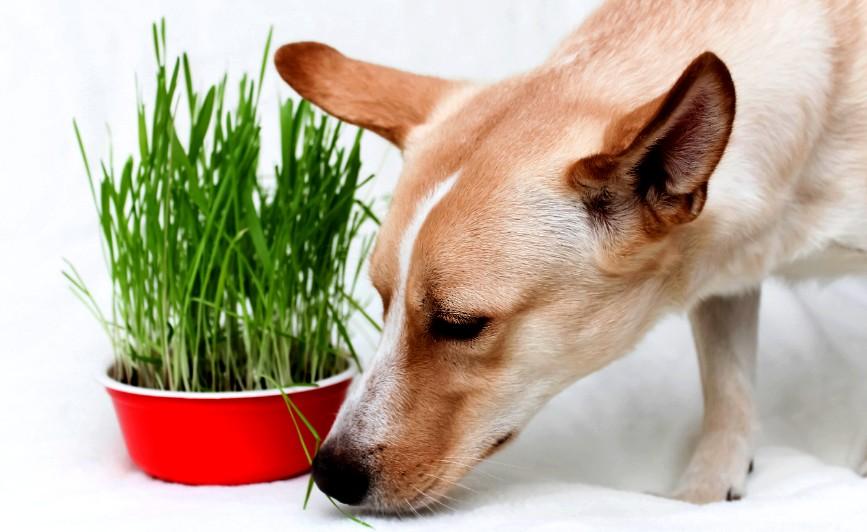 Vegetable Origin
Vegetable Origin
3+ MIN
18/05/2022
Can dogs be healthy on a vegan diet?
As more humans turn to vegan alternatives, more vegan options are popping up on pet food shelves as well, and you may be wondering whether they provide complete and sufficient nutrition for your pup. Are they healthy? Do they provide all the nutrients needed? Aren't dogs carnivores? Let's take a look at what the science says. Dogs are not carnivores Yes, the dogs who are now our loving pets may have ancestry from wolves running wild and hunting for prey. But, a lot has changed throughout the process of taming these wolves and breeding them into the loyal, domesticated dogs we know today. Dogs being carnivores is still a common misconception, but research has shown it is not the case. A 2013 study published in the journal Nature showed that dogs have co-evolved with humans and adapted to a starch-rich diet, proving that dogs are, in fact, omnivores, and their intestines are now well-equipped to handle grains and starches. In addition, according to a study by Dr. Andrew Knight, Professor of Animal Welfare and Ethics and Director of the Centre for Animal Welfare at the University of Winchester, plant-based meals are just as palatable and appetizing to dogs as traditional meat-based meals. In the study, 2,308 dogs were observed by their caregivers, who watched for ten behavioral indicators of palatability at meal times. The study states, 'There was no consistent evidence of a difference between vegan diets and either the conventional or raw meat diets.' Okay, so dogs can and will eat plant-based meals. But what about their health? Is it actually good for them, or will it cause them to be deficient in nutrients, weak, or sick? Can dogs be healthy on a vegan diet? In 2019, Wendy Brown and her colleagues studied the health of 12 sprint-racing Siberian Huskies. In the study, six dogs were fed traditional meat-based dog food for active dogs, and six were fed a vegan alternative formulated to the same nutrient specifications. The experiment lasted 16 weeks, including ten weeks of competitive racing, and blood tests and veterinary health checks were conducted several times during its course. The consulting veterinarian assessed all dogs to be in excellent physical condition throughout the study. No dogs developed anemia or any other detectable health problems. The study concluded that 'a carefully balanced meat-free diet can maintain normal haematological values in exercising dogs.' In an article titled Plant-based diets for dogs, published in the Journal of the American Veterinary Medical Association, the authors (Sarah Dodd et al.) state, 'Dogs have dietary requirements for energy and essential nutrients, but they do not have a recognized requirement for animal-derived ingredients per se. In accordance with the current understanding of pet nutrition, any diet that meets or exceeds the minimum nutrient requirements of a dog for a specific life stage would be considered nutritionally sufficient for that animal, regardless of ingredients.' A new study by Andrew Knight studied guardian-reported indicators of health in 2,936 dogs fed either a conventional meat diet, a raw meat diet, or a vegan diet for at least one year. Seven general indicators of ill health were studied: unusual numbers of veterinary visits, medication use, progression onto a therapeutic diet after initial maintenance on a vegan or meat-based diet, guardian opinion and predicted veterinary opinion of health status, percentage of unwell dogs, and number of health disorders per unwell dog. As it turns out, dogs who consumed conventional dog food seemed to fare worse than dogs in the raw meat and vegan groups: 49% of dogs on a conventional meat diet were considered to have suffered from health disorders. In comparison, the numbers for dogs following the raw meat diet and the vegan diet were 43% and 36%, respectively. The benefits of a vegan diet In a previous blog post, we talked about the potential benefits of feeding dogs a meat-free diet. To refresh your memory: a vegan diet can have several positive effects on a dog's health, including reduced allergy symptoms (the most common allergies in dogs are, in fact, chicken, beef, dairy, and egg), healthier skin and fur, and even a reduced risk of cancer. We also told the success story of Bramble, the vegan dog who lived so long she was featured in Guinness World Records as one of the world's oldest dogs. by Sabine - Pawco foods
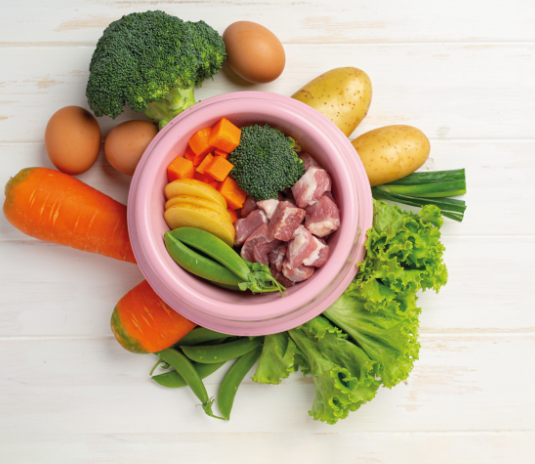 Vegetable Origin
Vegetable Origin
8+ MIN
17/05/2022
Food supplements in pet food: An example in dogs with essential oils and melatonin as functional ingredients
The word nutraceutical mixes the terms "nutrient" and "pharmaceutical." It was coined by Stephen DeFelice in 1995, who defined nutraceuticals as "foods (or part of a food) that provide health benefits, including prevention or treatment of a disease." Today, the term "nutraceutical" applies to a wide range of products, such as food and dietary supplements, botanicals, specific processed foods (functional foods), and isolated nutrients. The European Nutraceutical Association defines nutraceuticals as substances that differ from pharmaceuticals being "synthetic substances or chemical compounds formulated for specific health indications." The terms "food and dietary supplements" and "functional foods" are used without distinction as synonyms, although there are substantial differences between them that are not always obvious. On the one hand, food supplements contain nutrients derived from food products commonly concentrated in capsule, powder, liquid, or tablet forms. On the other hand, functional foods contain the nutrients necessary for survival, while nutraceuticals are complementary to the diet; they also help in disease prevention and health dysfunctions. There are numerous classifications of nutraceuticals, functional foods, and food and dietary supplements. Previously, they were classified as potential or established nutraceuticals based on food material and nutrients or concerning their positive effects on health. Their classification is mostly based on the chemical components or active ingredients. During the last couple of years, we have seen many new nutraceuticals. This resulted in a long nutraceutical list whose active ingredients are as diverse as surprising. It includes: phenolic compounds (i.e., flavonoids, anthocyanins, resveratrol), organic acids (vitamin C), tocopherols (vitamin E), carotenoids (provitamin A), anthraquinones, isoprenoids, alkaloids, isothiocyanates, and mono and polyunsaturated fatty acids (MUFAs, PUFA), among others. A particular type is prebiotic and probiotic products. Consumers in the United States, Canada, Europe, and Japan show great acceptance of these products and easily pay the high prices that most of them command. Perhaps, for companies producing nutraceuticals, the potential nutritional interest is dwarfed by the prospective market value that reached US$250 billion in 2018. In general, plant-based nutraceuticals tend to be better accepted by consumers than others, as they come from vegetal sources. In this sense, nutrition-based health throughout human history can be explained by Prof. Rowe's humorous comment: 2000 B.C.—Here, eat this root. A.D. 1000—That root is pagan. Now say this prayer. A.D. 1850—That prayer is superstition. Now, drink this potion. 1940 A.D.—That potion is poisonous. Now take this pill. 1985 A.D.—That pill is ineffective, take this antibiotic. 2000 A.D.—That antibiotic is not natural, better eat this root. By synergy, nutrition in pet food has been conquered by nutraceuticals and functional foods as well, constituting a category of products booming in the sector. Pet food companies are considerably increasing the incorporation of functional foods in the diets of companion animals, complementing the offer of conventional products (Ruiz-Cano, Sánchez, & Arnao, 2022). The global market for functional pet foods, including organic foods, reached a value of US$ 1,955 million in 2020 and is estimated to reach US$ 4,676 million in 2030, forecasting a growth of 8.8% in that period. Within this market, the dog segment accounted for 69% in 2019, representing approximately 50% of the global functional pet food market in 2020. This trend is expected to continue over the forecast period (Kamble and Deshmukh, 2021). Generally, veterinary professionals agree with the use of functional foods, as long as their recommendation has scientific data support for the safety and efficacy of these new products (Ruiz-Cano, Sánchez, and Arnao, 2022). There are many types of ingredients that constitute the new functional foods. Thus, the classics such as minerals, vitamins, fibers, various polysaccharides, mono- and poly-unsaturated fatty acids, etc., have been joined by others, which alone or in combination, are presented as novelties or even as "foods or ingredients miracle." In the pet food sector, we can mention novel compounds such as: 1) Polyphenols (flavones and isoflavones, flavonols and flavonoids, anthocyanins and pro-anthocyanidins); simple phenols such as phenolic acids and their alcoholic derivatives, ellagic acids, coumarins, stilbenes such as resveratrol, colorants such as betalains (betacyanins and betaxanthins) and curcuminoids, very topical, with wide and varied applications in health. 2) Aliphatic, aromatic and indolic glucosinolates, and their hydrolysis products, isothiocyanates, where their role as anti-oncogenic substances stands out. 3) Terpenoids, one of the most traditional in their use, are the carotenoids, although several xanthophylls with excellent characteristics have been added to the classic carotenes (α- and β-carotene, lycopene). Another group of terpenoids with growing applications are essential oils, composed of mono-, di- and sesquiterpenes, as well as various phenolic compounds. Aspects such as its enormous diversity, ethnopharmacological background, and progressive scientific study are opening up multiple applications as functional ingredients with a promising future. Triterpene saponins such as squalene and others have attractive applications as hypocholesterolemic and anti-inflammatory. 4) Alkaloids used pharmacologically for their psycho-and neurophysiological properties, which have been recently revisited with extensive studies (capsaicin, piperine, barbaloin, hypericin, etc.), are also the case of anthraquinones, studied for their antibacterial properties, among others. The key source of these compounds are various plants, constituting a great and diverse store of functional ingredients with enormous prospects for application in nutrition and health. With increasing momentum, large companies are chartering expeditions of scientists in search of novel plant ingredients, especially in Asian countries. Lately, other sources provide interesting ingredients and functionalities, such as microalgae. In this case, counting to its excellent qualitative and quantitative protein and fatty acid content, a mineral and vitamin content is added that is difficult to surpass by other sources. In addition, its good relationship between production costs and yields makes it possible to boast increasingly affordable prices. One of the most novel sources of ingredients is that of insects. Even though nutritionally speaking, they are high-quality biological materials, especially for their protein, it is difficult to think that their limited production can cover the sector's needs. Among the functional properties of these ingredients with interest for the pet food sector, we can point out, from general actions with non-specific benefits for health such as healthy, energetic, invigorating, restorative, anti-aging, etc., to more or less specific impacts such as anti-: bacterial, fungal, viral, parasitic; ingredients with regulatory activities of metabolic functions such as those related to cholesterol, triglycerides, glucose, ureides, etc.; we can also mention the ingredients against pain, nausea, dizziness, hypertension, vasodilators, etc.; those with organic activity such as hepato-protectors, protectors of the renal, urinary, coronary, pulmonary, arterial, gastrointestinal, oral, nasal, etc.; without forgetting those aimed at mood and sleep such as antidepressants, relaxants and sedatives, and finally, those with an activating capacity of the immune system and anti-cancer and anti-aging, which means a whole arsenal of natural compounds to improve against health dysfunctions in our pets. We must not forget they are not drugs and, therefore, only adequate and generally continued use could - presumably - alleviate specific minor dysfunctions. For example, increased intake of certain functional ingredients (vitamin D, omega-3 PUFA, phytogenics such as some essential oils and tea catechins) affects positively immune function, improving defenses and reducing the risk of infection (Bobeck, 2020). Next, we are focusing on the development of a range of food supplements for dogs. In this case, a preliminary study was carried out on those aspects related to the health of animals that could be improved or alleviated with functional ingredients. In this range, aspects such as oral hygiene, fur, gastrointestinal, liver, and kidney problems; muscle and joint performance aids; aging and stress problems, remedies against fear, and some more were addressed. In this work, we will focus on exposing four of the food supplements developed, with health objectives in joint health (Joint), intestinal health (Intestinal Parasite), fur health (Skin & Hair), and nervous health (Relaxing-Anti- stress). These products complement an adequate diet for the dog since they do not provide fundamental nutritional constituents, so the easiest and most controlled way of supplying the product was thought of. Due to the nature of the functional ingredients selected, a common denominator based on high-quality salmon oil was chosen. Salmon oil, considered a nutraceutical of great interest (thanks to its anti-arteriosclerotic and anti-inflammatory qualities), has multiple health benefits for pets, such as: atopic dermatitis, musculoskeletal system, osteoarthritis, joint health, gastrointestinal tract, cognitive function, neurological health, and behavioral disorders (aggressiveness) among others. Thus, it can be used as a base material to formulate the rest of the functional ingredients. Table 1. Packaging and formulation of food supplements for dogs. Table 1 shows the functional ingredients used in the mentioned food supplements development. Essential oils used since ancient times present enormous baggage of historical and ethnographic knowledge (Baser and Buchbauer, 2015). Our experience and studies have allowed us to design appropriate formulations for each of the health objectives previously set. Stability and dosage studies (considering the synergistic interactions found) present each essential oil used (and their integration as a whole) as unique and specific supplements. The excellent antioxidant properties of essential oils come to complement that of other ingredients such as tocopherols and carotenoids, all of natural origin and perfectly integrated into salmon oil. The other functional ingredient used in these food supplements is melatonin. This natural compound has numerous excellent beneficial properties for animal health (Arnao and Hernández-Ruiz, 2018). Although there are few studies on pets, this molecule is one of the most studied in animal and human models. In our case, melatonin is incorporated as a functional ingredient under two aspects: as a regenerating agent of hair follicles, also used in treatments for seasonal (cyclical) alopecia of the flanks, and as an anti-stress and sedative agent against episodes of fear, anxiety, and nervousness that some dogs suffer; also in sleep disorders in elderly dogs. In addition, melatonin has excellent antioxidant properties, which reinforces the actions of essential oils, contributing to the stability of the whole. The food supplement is added to the food ratio indicated according to the dog weight (from 0 to >48 kg corresponding to a proportional amount of product between 4 and 16 ml). The functional ingredients used (terpenoids, polyphenols, tocopherols, carotenoids, EPA and DHA, and melatonin) contribute to the diet gradually improving the well-being of dogs due to their positive effects. Excellent palatability and subsequent acceptance of the developed products by animals have been verified, without causing adverse or secondary reactions in dogs, due to the balance between its components. Doctor Domingo Ruiz-Cano / R & D Department of Alinatur Pet Food, S.L., Lorca, 30817-Murcia, Spain. Author for correspondence: [email protected] Mr. Ginés Sánchez Carrasco / Department of Production of Alinatur Pet Food, S.L., Lorca, 30817-Murcia, Spain. Professor Marino B. Arnao / Department of Vegetable Biology (Plant Physiology), University of Murcia, 30100-Murcia, Spain. [email protected] BIBLIOGRAPHY 1. Kamble, A., Deshmukh, R. (2021). Global functional pet food market. Allied Market Research, https://www.alliedmarketresearch.com/functional-pet-food-market-A11855 2. Ruiz-Cano, D., Sánchez, G., & Arnao, M.B. (2022). Current vision of functional foods in the diet of cats and dogs. International magazine about pet food industry, edition nº 10, volume IV. 3. Bobeck, E.A. (2020). Nutrition and health: companion animal applications: Functional nutrition in livestock and companion animals to modulate the immune response. Journal of Animal Science, 1, 98: skaa035. 4. Baser, K.H.C., Buchbauer, G. (2015). Essential Oils Used in Veterinary Medicine. In: Handbook of Essential Oils; CRC Press, NY. ISBN 978-0-429-15566-6. 5. Arnao, M.B.; Hernandez-Ruiz, J. (2018). Phytomelatonin, Natural Melatonin from Plants as a Novel Dietary Supplement: Sources, Activities and World Market. Journal of Functional Foods, 48, 37–42. Fuente: Alinatur
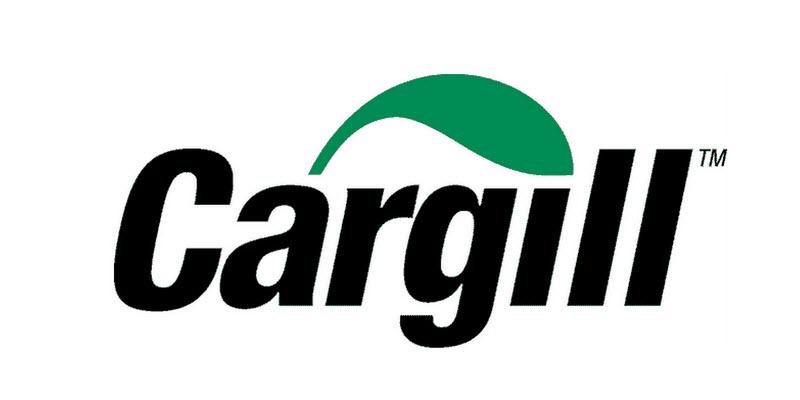 Market Information
Market Information
1+ MIN
12/05/2022
Cargill expanding global animal nutrition innovation center
Cargill announced that it is expanding and renovating its Global Animal Nutrition Innovation Center in Elk River, Minnesota. Along with a facility in Velddriel, The Netherlands and the soon to be operating Changrong R&D center in China, the Elk River site serves as a hub of the company's global network of 15 animal nutrition research and technology application centers. The nearly $50 million investment will upgrade animal facilities including a new dairy innovation unit, construct a larger onsite feed mill, create a visitor's space, and build a state-of-the-art laboratory for nutrient research and development. Designed to serve dairy, poultry, swine and aqua nutrition customers and the testing needs of other Cargill businesses, the Global Innovation Center hosts more than 2,000 visitors a year. In addition, new viewing corridors will allow visitors to view the animal R&D facilities conveniently. On April 19, the company held the official groundbreaking for the upgraded facility that will open in spring 2023. The site has been operational for Cargill since 1958. 'This is the largest investment Cargill's animal nutrition business has made in innovation,' said Adriano Marcon, group leader of Cargill's animal nutrition business. 'We want to be the best animal nutrition partner globally, and our customers expect us to bring innovations that make them more competitive, efficient, and sustainable.' Source: Feed Planet
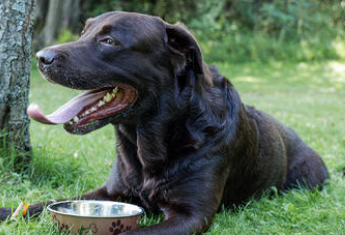 Micro Ingredients
Micro Ingredients
5+ MIN
11/05/2022
Basic nutrition of our best friend, the dog: hydration in dogs
And now, in this next article, we will take a look at the topic of hydration in dogs, how important water is for pets' health, and what are the water requirements for dogs. The importance of hydration Hydration is important for all life. Water is a vital part of every single cell in the entire body, and just a small water loss can be critical to pets' health. Did you know that dehydration predisposes pets to overheat (hyperthermia) and low blood pressure? If a pet experiences 1% body loss from dehydration, this can cause a 0.5 degrees increase in body temperature and a 2.5% reduction in blood plasma volume (1). These two factors combined increases the risk of heatstroke since the body temperature goes up and the reduced blood pressure leads to less blood to the extremities (ears, tongue, legs, etc.), where it could be cooled off. Heatstroke is one of the most common causes of death in military working dogs (2,3), and dehydration was also the most common medical finding in dogs deployed to the 2010 earthquake in Haiti (4). For the search dogs working at the World Trade Center and Pentagon during the incident at 9/11 in 2001, dehydration was reported even though weather temperatures were moderate (5). Thermoregulation strategy of the dog Heat, humidity, and hydration, all affect a dog's ability to thermoregulate. Since outdoors heat and humidity can't be controlled by us, the work we humans can do to ensure optimal hydration of the dog becomes crucial. Panting is the dogs' primary thermoregulation strategy; he or she inhales cooler, dryer air through the nose and mouth, which causes evaporative heat loss from the nose, mouth, and tongue, and the exhalation of hotter, moister air. If body heat generation is greater than the heat loss, and panting is not enough, the dog will increase salivation and lingual blood flow to try to cool down. Therefore, to be able to properly thermoregulate sufficient water intake is required. Loss of water in dogs is a result of panting, urine and feces excretion, and some sweat loss through their paws. Depending on the type of workload and weather conditions, exercise can increase water losses by 10-20 times normal. Even mild dehydration can lead to decreased performance, decreased strength, and hyperthermia (6). In hydrated dogs, the salivary loss is estimated to 7 mL/kg/h during exercise (7). To compensate for all this, the dog needs to replace the water loss by drinking water and eating food. Basic nutrition of our best friend, the dog: important micronutrients Water requirement in dogs So, what are the daily water requirements of the general house dog? Several studies have provided different formulas for calculating the water need in dogs, and one thing is clear: the water requirement is closely connected to the food given, as well as the activity level and the temperature surrounding the dog. An easy rule of thumb under normal activity levels and weather conditions may be as follows: when given dry food, the water requirement can be set to 1ml per 1 calory in the food. To exemplify this, a 20 kg dog eating 1250 kcal per day should get 1,25 liter water daily (8). Of this, approximately 0.25 liter will come from the food (water content in food + water from burning food to energy). The remaining water amount, 1 liter, the dog must drink each day. Studies have shown that dogs participating in 500km/300miles races could have a water turnover of up to 5 liters per day. For the general active dog or working dog, drinking water should be offered multiple times during the exercise to ensure appropriate hydration. If the dog does not consume enough, it should be blended into the food, to increase the daily water intake. Electrolytes in active dogs When talking about hydration, it is also worth mentioning electrolyte treatments. Electrolytes are various salts important for nerve impulses, muscle contractions, and fluid balance, amongst others. Electrolytes effectively bind the water in the body, and drinking water or sports drinks that contain electrolytes is a common strategy for humans to keep hydrated during activity. However, humans have quite a different ability to sweat out excess salts compared to dogs. The human cooling strategy is based on 2-5 million sweat glands that can excrete water and salts in a large amount. For us, it can therefore be crucial to refill water and electrolytes during exercise. Dogs on the other hand have just a few sweat glands in their paws and only a very small salt loss from saliva while panting. Hence, the salt excretion through the dog's cooling strategy is almost absent. Therefore, common knowledge about electrolyte refill in human athletes cannot be applied to dogs. Basic nutrition of our best friend, the dog: water and energy sources Most studies of working or hunting dogs have shown only small or no electrolyte changes following exercise. For those who have tried electrolyte supplements on their dog during e.g. hunting season, salt poisoning has not been uncommon. In a few studies of sled dogs, though, sodium was significantly decreased following 10 days of endurance racing. Therefore, only in extreme races, electrolytes may play an important role in the hydration of dogs. Ermon et al, 2014 (9) suggest up to 1.2g sodium per 1000kcal to prevent an exercise-induced drop in Na and K in sled dogs participating in the Iditarod race, but further studies are needed to confirm. Conclusion Dogs' water requirement depends on many factors: weather condition, air humidity, temperature, activity level, food intake, and body weight. Only a small body loss from dehydration can cause a significant drop in performance for your dog. To replace water, the dog must drink and eat sufficiently. Therefore, be aware of these factors when exercising your dog. Calculate how much water your dog needs approx. per day and keep an eye on how much he or she drinks, as dehydration is not easily detected by the human eye in time. And finally, dogs' thermoregulation strategy is not like in humans, so stay clear of electrolyte supplements unless your dog is into extreme sports.
 Market Information
Market Information
1+ MIN
10/05/2022
Symrise Pet Food to build new pet food palatant plant in US
The state-of-the-art facility, which will be completed by 2025, will allow the company to meet increased demand and grow its powder palatant product lines. Symrise Pet Food General Manager for North America Tim Lonc said that this expansion is a 'key step' for the business. 'As the pet food industry keeps growing, we are committed to supporting our customers' needs and are always looking for ways to reach out for new opportunities.' The new facility will also create 65 new jobs. Source: Global Pets
 Market Information
Market Information
2+ MIN
09/05/2022
Darling Ingredients Inc. to Acquire Largest Independent Brazilian Rendering Company, FASA Group
For approximately R$2.8 billion Brazilian Real in cash ($560 million USD at today's exchange rate), subject to post-closing adjustments and a contingent payment based on future earnings growth. FASA Group processes more than 1.3 million metric tons annually through 14 rendering plants with an additional two plants under construction, and has approximately 2,400 employees. "Brazil is a leader in global agricultural commodities growth and is expected to take on a bigger role in world's meat production, making it a premier location for rendering growth," said Randall C. Stuewe, Chairman and Chief Executive Officer, Darling Ingredients. "FASA will also supplement Darling Ingredient's global supply of waste fats, making it a leader in the supply of low carbon waste fats and oils in North and South America to be used in the production of renewable diesel." The transaction is subject to customary closing conditions, and is expected to close by the end of 2022. About Darling Darling Ingredients Inc. (NYSE: DAR) is the largest publicly traded company turning food waste into sustainable products and a leading producer of renewable energy. Recognized as a sustainability leader, the company operates 250 plants in 17 countries and repurposes nearly 10% of the world's meat industry waste streams into value-added products, such as green energy, renewable diesel, collagen, fertilizer, animal proteins and meals and pet food ingredients. To learn more, visit darlingii.com. Follow us on LinkedIn. Source: Darling Ingredients
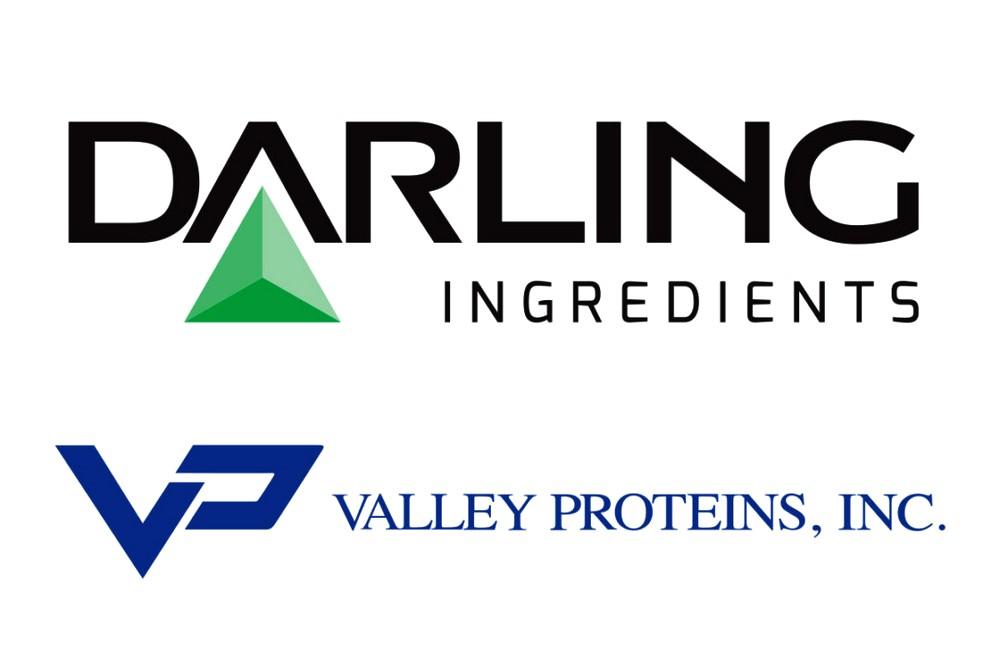 Vegetable Origin
Vegetable Origin
1+ MIN
06/05/2022
Darling Ingredients Inc. Completes Acquisition of Valley Proteins
The company first announced the acquisition in December 2021 for a purchase price of $1.1 billion, plus or minus various closing adjustments. As part of the transaction, Darling Ingredients has acquired 18 major rendering plants and used cooking oil facilities throughout the southern, southeast and mid-Atlantic regions of the U.S. "We are excited to welcome Valley Proteins to the Darling Ingredients family," said Randall C. Stuewe, Chairman and Chief Executive Officer. "Valley Proteins has built a successful rendering and used cooking oil business that immediately strengthens our base business and expands our ability to provide additional low carbon intensity feedstocks to fuel the growing demand for renewable diesel." About Darling Darling Ingredients Inc. (NYSE: DAR) is the largest publicly traded company turning food waste into sustainable products and a leading producer of renewable energy. Recognized as a sustainability leader, the company operates 250 plants in 17 countries and repurposes nearly 10% of the world's meat industry waste streams into value-added products, such as green energy, renewable diesel, collagen, fertilizer, animal proteins and meals and pet food ingredients. To learn more, visit darlingii.com. By Darling Ingredients
 Packaging
Packaging
2+ MIN
05/05/2022
Think Plastic Brazil – A window to the world of Packaging
Undoubtedly, an event to take into account for the food industry, and above all for all of us who are immersed in the growing pet food industry. Upon arrival at the event, we were kindly hosted by Gabriel Rajão, Public Relations of Think Plastic Brazil , who introduced us to several very interesting Brazilian companies involved on the packaging of different types of feeds & foods, but the pet food segment was the star of its portfolio of packaging solutions The new intelligent and sustainable solutions were the focus of the scene and the members of every company spent some time to explain us about it. The All Pet Food team took advantage of the visit to learn about Think Plastic Brazil, which is defined as a non-profit organization that aims to bring Brazilian companies that transform plastic to different international markets, being packaging one of the items they work the most in different areas, being the segments of Animal Feed and Pet food of greatest importance and strength That´s why All Pet Food interviewed Carlos Moreira Planning and Projects Manager of Think Plastic Brazil, who invited the entire audience to participate in the World Plastic Connection Summit to be held from 7-10 November 2022, where there will be an emphasis on the pet food sector, in both the Brazilian and Argentine markets On the other hand, Cristina Sacramento, Market Development Specialist at Think Plastic Brazil, gives us a brief reference to the organization and opens a window for all pet food and feed producers to look into the different packaging alternatives depending on their needs and type of product We invite you to enjoy the inteviews by: All Pet Food
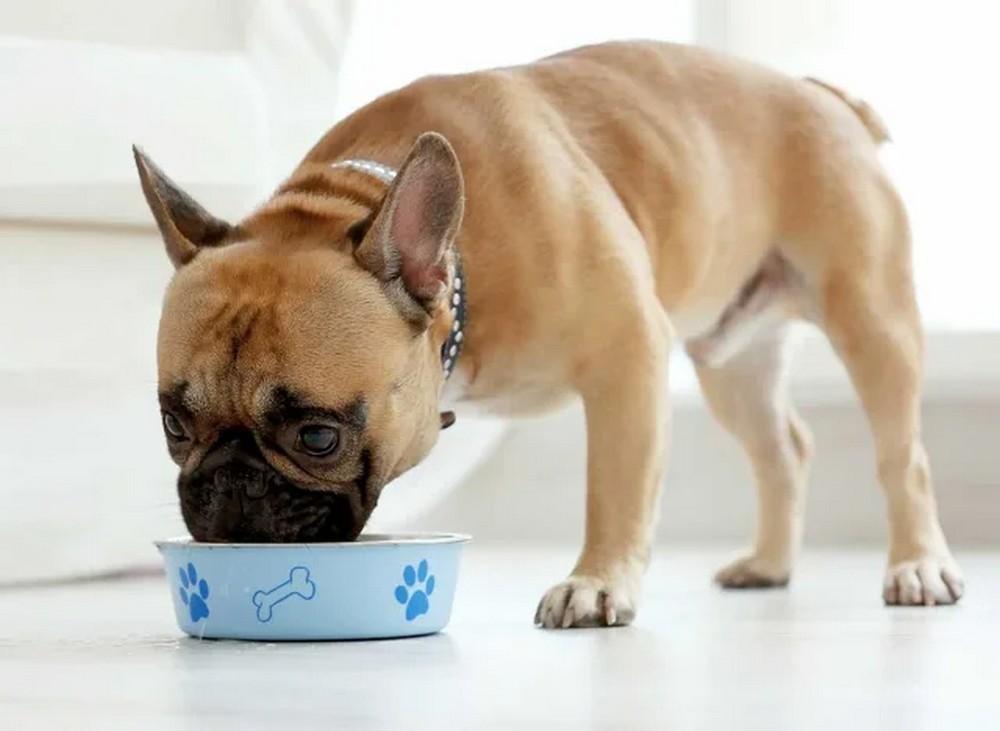 Formulation
Formulation
2+ MIN
03/05/2022
Majority of Pet Owners Are "Obsessed" With This Food, Says Data
Only the best for our fur babies! This is according to a new Chewy.com survey about premium pet foods, which has fetched some telling new trends. When it comes to feeding our pets, it's clear that the majority of us are adamant that our fur babies eat as healthy as we do. The online pet products destination polled 1,500 cat and dog owners about what they look for when it comes to mealtime, and found that millennials and Gen X shoppers are "health-obsessed," with 52% of shoppers looking for pet food that has strictly "clean" ingredients. Meanwhile, 75% of millennial and Generation X pet parents "are especially interested in grain-free, organic and non-GMO food with 75 percent choosing these options," reports Pet Product News. Meanwhile, 87% said it's important to check the label, searching for keywords like "premium, natural, organic and USDA organic, high-quality nutrition, high protein, weight control, healthy, superfood, ancient grain, limited-ingredient, non-GMO, farm-fresh, and preservative-free." Similar to the local-ish ways we shop for ourselves, 84% of us are looking for pet foods that are made in the U.S., the survey found. Based on these findings, maybe it's not surprising that 89% of respondents believe it's important for pets to eat the highest-quality ingredients available, and 82% are willing to pay for those. With all this in mind, Chewy has partnered with Canada's Champion Pet Foods to launch specific destinations on their site where pet owners can find premium foods, or what Chewy calls "the highest-quality ingredients for superior nutrition and health." For pet owners and the cats and dogs we love, finding a one-stop destination for pet food that comes minus fillers, artificial ingredients, and dyes is definitely a treat. by Krissy Gasbarre
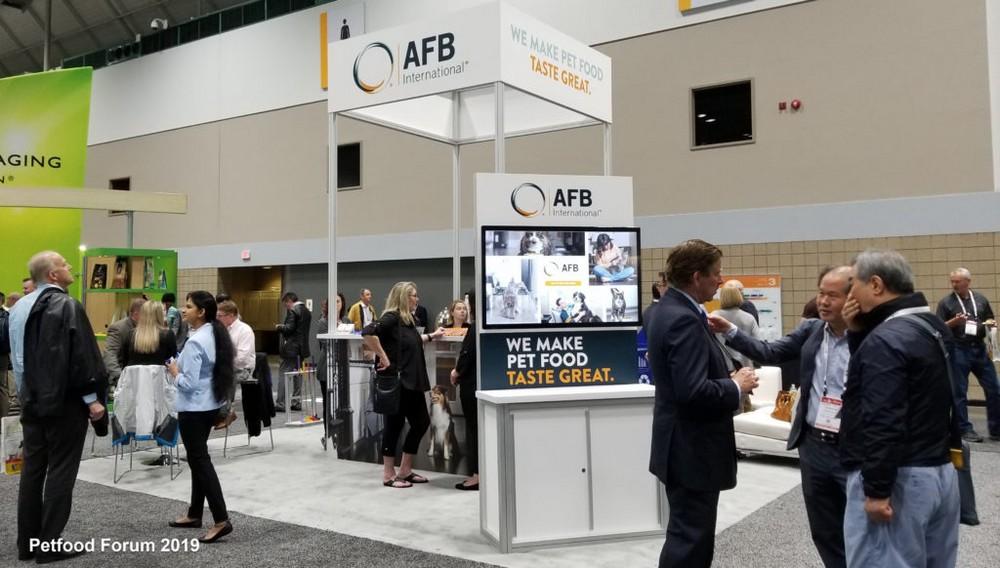 Market Information
Market Information
3+ MIN
02/05/2022
2022 – Year of the In-Person Tradeshows!
Petfood Forum May 2 – 4, 2022 in Kansas City, MO Visit Booth #1300 to learn about our consultative approach that helps us identify how our experts, services and products can help meet your specific needs. In addition, Michelle Sandau, Ph.D., AFB Director of Research and Development will discuss transforming subjective responses to a measured response in her presentation 'Specialty pet food formulations: Bridging the gap between emotions and science' on Tuesday, May 3rd. Fenagra Brazil Pet Food Expo May 11 – 12, 2022 in Campinas, Brazil Join us in Brazil at booth #B30 for one of the largest events for the Latin American pet food market. Bruna Leao, AFB's Marketing Analyst, is excited to attend her first pet food expo. Interzoo May 24 – 27, 2022 in Nuremberg, Germany Also in May, AFB is eager to see our customers face-to-face again at Interzoo – the world's leading trade show for the international pet food industry. Visit booth 6-321 in Hall 6 for an opportunity to meet our global Sales, Marketing and R&D teams and learn about our low phosphorus and probiotic palatants. 'We are so excited to see customers in person again at Interzoo! This trade fair provides a fantastic opportunity to share our new products, learn about customer needs, and offer our insights as the leader in pet food palatability. Stop by our booth in Hall 6 to discuss how AFB can help meet your specific palatant needs. I look forward to seeing you in Germany!' – Sebastian Valencia, Regional Product Manager, AFB Europe Foro Mascotas June 16 – 17, 2022 in Guadalajara, Mexico The global tour continues at Foro Mascotas in June. Meet our AFB team at booth #60 – 61 to learn how we deliver palatability, partnership and performance to our customers. 'Foro Mascotas offers a unique opportunity for us to interact with our customers and share our knowledge as leaders in pet food palatability. I invite you to stop by our so that together we can analyze how AFB can help meet the specific needs of your company. I hope to see you soon at the forum.' – Jeanette Cano, Sales Manager, AFB Mexico CIPAL September 28-29, 2022 in Puerto Madero, Argentina Visit booth #G1 to learn how AFB uses scientific approaches and advanced technologies to help customers maximize pet food performance at the Latin America Pet Food Industry Congress CIPAL in September. 'As in previous years, next September AFB International will participate with a stand at CIPAL 2022 (Latin America Pet food Industry Congress ), to be held at the Catholic University in Buenos Aires, Argentina. CIPAL has been positioned as one of the most important pet food congresses in Latin America. This year an increase of 40% in the exhibition areas and double the number of technical conferences is scheduled. In previous years we have been visited by more than 600 participants including pet food manufacturers, suppliers of equipment and ingredients and technicians related to the area. AFB will be present with its team of technical and commercial professionals to provide information on dog and cat food flavoring products and programs.' – Cesar Garrasino, Technical Service, AFB Argentina. by AFB International Source: All Pet Food
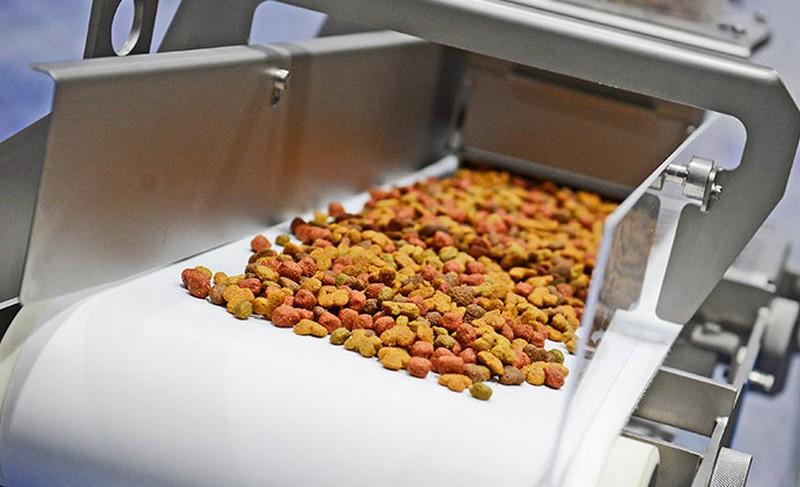 Market Information
Market Information
6+ MIN
29/04/2022
Argentina Feed Industry and Trends
We continue our journey of countries with Argentina this month. Argentina, which has one of the largest economies in Latin America, is among the top 10 countries in the world in compound feed production. According to 2021 Global Feed Survey prepared by Alltech, Argentina produced 22.5 million tons of compound feed in 2020. However, 2021 data published by Alltech in January 2022 indicates that the annual production decreased to approximately 18.5 million tons. Among these production figures, the largest share on the basis of feed type belongs to broiler feeds with 5 million 743 thousand tons and dairy feeds with 5 million 734 thousand tons. These are followed by pig feeds with 2 million 930 thousand tons and cattle feeds with 2 million 204 thousand tons. According to Alltech's 2021 report, there are around 880 feed mills large and small in the country. To have more detailed information on Argentina feed industry, we had an interview with M.V. Juan Pablo Ravazzano, President of Argentina Commercial Chamber of Animal Nutrition Companies (CAENA). Unlike Alltech reports, Mr. Ravazzano states that an annual average of 20 million tons of compound feed is produced in the country and that there are more than 300 feed mills on an industrial scale. M.V. Juan Pablo Ravazzano, President of Argentina Commercial Chamber of Animal Nutrition Companies (CAENA) Argentina feed market has a significant potential, but, like many countries, it has not yet been able to erase the negative effects of Covid-19, and now it has to deal with the price pressure on raw materials caused by the Russia-Ukraine war. CAENA President Mr. Ravazzano tells more details for our readers. We know that CAENA celebrated its 60th anniversary just two years ago. Can we get some more information about CAENA and its objectives? What is its role in the feed industry? Who are its members? And what part of the Argentina feed industry do your members represent? CAENA is the National Commercial Chamber of Animal Nutrition Companies. Before 2004, it was called CAFAB, and pet food companies weren't included in it. From then up to now (when the organization includes them) we have all the industry inside the chamber. The companies that are members of CAENA are: feed companies, pet food companies, premix and additives companies. Our 140 members represent 85% of the total animal production companies of Argentina. Our main role is to work on the agriculture local policy, taking care of the industry interests and elevating the quality standards. This role is very important in the facilitation of commercial and better practices with the government and its dependencies that involves private interaction. Could you also give us some information about the feed industry in Argentina? How many feed manufacturers are there in your country and what is their average annual production? Which animal feed types are produced most? In Argentina, there are more than 300 animal feed plants atomized in the whole country. The main areas of production are the provinces of Buenos Aires, Córdoba and Santa Fe (because they concentrate the main grain production). The average annual feed production is around 20 million tons and the most produced types are ruminants (it has 50 million livestock production yearly). What is the size and growth potential of the compound animal feed market in your country? What is the role and place of the Argentinian feed industry, especially in terms of production and exports, in the global market and in Latin America market? The size of compound animal feed is not specified but is directly associated to the livestock, that's why we work annually on an estimation regarding how much the consumption should be. It shows that our market grows almost 2% every year. The role of Argentinian products in feed industry is a production/local consumer one and we also have an export orientation that actually is growing, but it represents only a small part of our production (around 4%). However, we think the excellent product quality and the local costs represent an opportunity to make international commerce higher and more stable to local economics issues. In recent years, Covid-19 pandemic and epidemics such as African swine fever (ASF) and avian flu have seriously affected the animal nutrition industry. How did all these outbreaks affect the Argentinian feed industry? What about their effects in your country? Argentina hopefully has a very high sanitary status and these two epidemics haven't affected our animal feed nutrition condition at all, representing an opportunity for exporting more to Europe and Asia and also working on a constant caring of the GMP. The global animal nutrition industry has many important topics on its busy agenda; such as antibiotic-free production, sustainability, environmental footprint, carbon emissions, alternative proteins, feed safety and animal welfare. How do all these topics affect the feed industry in Argentina? Which of these issues are more important for the feed industry in your country? Actually, in Argentina we are working emphatic in GMP and HACCP, and also making a public-private work regarding antibiotic-free production. Also, CAENA organizes the National Animal Feed Congress in Argentina every two years and the last one in 2021 focused on sustainability, carbon and environmental footprint, putting these things in agenda for the next years of the market evolution. We think all the items mentioned are important but as we´ve been working in the last several years; we are making lots of progress and improvements in anti-biotic free production, feed safety and animal welfare. What would you like to say about CAENA's approach to the problems experienced in the industry, its solution proposals or its efforts to solve these problems? In the last 5 years, CAENA has made several changes in its structure to give the industry and their associates a better and more professional service, including faster and better information, solution to their day-to-day problems, and lots of connections to make their access to stakeholders easier than they can make separately (this also includes better government relationship). The COVID-19 made changes in everyone's life and CAENA wasn't the exception. It turned the chamber more agile, more digital and actually with a faster response on daily proposals and problems. Our main efforts today are focused on local regulations (working together with Regulatory Affairs – SENASA in Argentina) that could help us to make international commerce easier, of course without compromising our sanitary status. We are seeking to make more improvements in this area to accomplish a growth of the industry in the future, to capture the mentioned global opportunities. Finally, can we talk about the supply of feed raw materials and feed prices? Raw material supply and feed prices have recently become a big problem for farmers in many countries. What is the situation in your country? The COVID-19 pandemic and Ukraine/Russia war context didn't help at all to international commerce, the main consequences were: growing costs of logistics, less vessels, less and more expensive containers and actually an increase of raw material prices that elevates substantially production costs and competitiveness. This affects in two ways: Locally, because it increases our costs in dollars while the final product is paid in local currency after 2 or 3 months and with the increasing global and local inflation compromises profitability and produces decapitalization without good financial and stock management. And in a commercial sense, it cannot give us clarity on when to expect our product and how much the price will be. This uncertainty generates fluctuations that can lead to important losses if they are not well managed. What would you like to add about the animal nutrition industry in your country? Are there any other messages that you want to give about global animal nutrition industry? Argentina has very interesting opportunities in some specified products such as pet food, aquaculture and equine (also other specific products and additives) because we have a very good sanitary condition, very good processes and very good supplies that can make a difference in other markets. Our main problem remains in local assets such as local taxes for export that leaves us out of many competitive markets, and also lack of long term policies and also lack of credit for production. If we keep seeing the agro-industrial industry in Argentina as the main income it will only destroy opportunities. To produce responsibly is not enough if we don´t have common objectives. We hope as a country that we can have this chance to allow this industry to keep growing as the world would need more from our assets. Argentina is in a very good position to take care of this opportunity, but need to have more long term aligned policies. by Feed Additives
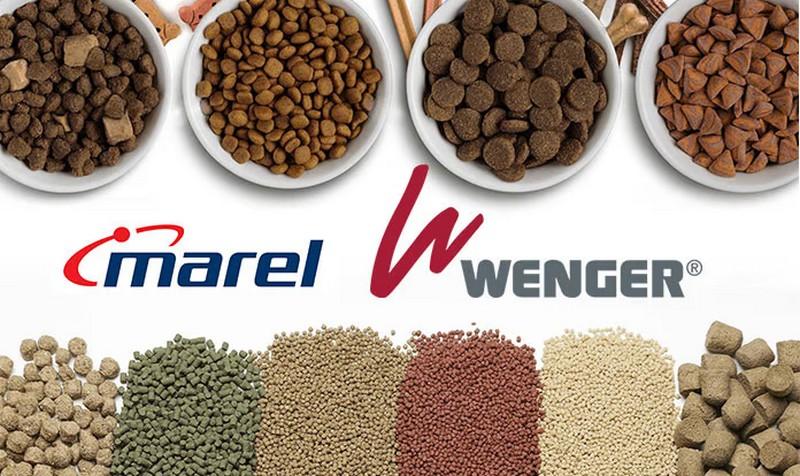 Market Information
Market Information
6+ MIN
28/04/2022
Marel to acquire Wenger, a global leader in processing solutions for pet food, plant-based proteins, and aqua feed
The acquisition of Wenger is a platform investment into new, complementary and attractive growth markets for Marel and will form the fourth business segment alongside poultry, meat and fish. The acquisition is subject to customary closing conditions such as anti-trust and approval of Wenger's shareholders. Platform acquisition adding a fourth business segment to Marel, in addition to poultry, meat and fish, and pro-forma, expected to contribute around 10% of Marel's total revenues and 12% of EBITDA. Highly complementary product portfolios and geographic presence with Wenger's industry-leading extrusion and dryer technology focused on the high growth markets of pet food, plant-based proteins and aqua feed. Founded in 1935, Wenger has 500 employees and revenues in 2022 are expected to be USD 190 million, EBITDA USD 32-35 million, and EBIT margin 14-15%. Total investment for the acquisition is USD 540 million and the transaction multiple corresponds to 14x EV/EBITDA adjusted for expected tax benefits of USD 60-70m. Pro-forma leverage following completion of the acquisition is estimated at around 3x net debt to EBITDA, in line with Marel's targeted capital structure of 2-3x net debt to EBITDA. The acquisition is fully in line with Marel's 2017-2026 growth strategy which targets 12% average annual increase in revenue through a balanced mix of organic and acquired growth. New business segment to become a fourth pillar of the business model A new business segment, based on the Wenger platform, will constitute Marel's fourth pillar alongside poultry, meat and fish, and will be focused on the sizeable and attractive growth markets of pet food, plant-based proteins and aqua feed. On a pro-forma basis, this new business segment will account for around 10% of Marel's total revenues and 12% of combined EBITDA. This new growth platform is an important addition to Marel's product portfolio to meet customers' rising demand for high-quality food and feed that is processed in a sustainable and affordable way. The two companies have a great strategic and cultural fit with highly complementary product portfolios and geographic presence, creating a strong platform to enhance further growth. Wenger shares Marel's passion for innovation and commitment to best-in-class products, backed by an experienced team and long-standing partnerships with customers. Wenger enjoys a diversified and loyal customer base ranging from blue-chip pet food processors to startup companies in plant-based proteins. This has resulted in healthy profitability, strong cash flow and solid return on invested capital. Capitalizing on Marel's global reach and digital platform, the two companies are well positioned to explore future growth opportunities together. Growth platform into new and attractive growth markets The global petfood and aqua feed markets are estimated at over EUR 100 billion and EUR 50 billion respectively and growing at 5-6% annually. The plant-based protein market is currently around EUR 7 billion and expected to grow 15-20% annually. The addressable market for Marel and Wenger in solutions and services within pet food, plant-based proteins and aqua feed is estimated to be around EUR 2 billion with expected annual growth of 4-6%, in line with Marel's long-term market growth expectations. Marel aims to grow faster than the market, based on its continuous innovation and global reach. Throughout the years, Marel has gradually expanded its playing field and is now the only pure-play provider of full-line solutions, software, and services to the poultry, meat, and fish industries. In the vision solidified in 2016, the scope was widened from the three animal proteins to focus more generally on transforming food processing. In 2020, Marel announced an increased focus on adjacent markets and in 2021 it formally established a business development division focused on pet food and plant-based proteins. Adding Wenger's strong capabilities in that area, Marel is accelerating its journey and is well positioned to capitalize on providing transformational solutions to the large and attractive growth markets of pet food, plant-based proteins, and aqua feed. Marel sees great opportunities and is committed to invest in the combined business to accelerate growth. The acquisition is expected to be margin and earnings enhancing. Planned initiatives include expanding manufacturing capacity to respond to high demand in Wenger's core markets. Aftermarket revenues represent over 40% of Wenger's revenues, and Marel's global reach and digital platform will support a more proactive aftermarket approach to better service customers around the world. Transaction highlights and timeline Marel has agreed to acquire Wenger Manufacturing LLC., including all relevant business activities of the group. The total investment for the acquisition is USD 540 million. Thereof, USD 530 million is the purchase price on a cash and debt-free basis (enterprise value). The remaining USD 10 million is a combination of a contribution to a not-for-profit private foundation, to continue the legacy of Wenger and its meaningful impact on the community, as well as Marel shares for Wenger employees. The purchase price will be paid with cash at hand and existing credit facilities. Discussion with selling shareholders regarding partial consideration in Marel shares is ongoing and will be concluded prior to closing. The transaction will also result in expected tax benefits of USD 60-70 million and the adjusted transaction multiple corresponds to around 14x EV/EBITDA. The acquisition will be financed through Marel's strong balance sheet and existing credit facilities. To preserve operational headroom, Marel has signed a EUR 150 million bridge facility from BNP Paribas Fortis SA/NV. Assuming a full cash payment, pro-forma leverage following completion of the acquisition is estimated to be around 3x net debt/EBITDA, compared to Marel's targeted capital structure of 2-3x net debt/EBITDA. The closing of the acquisition is subject to customary closing conditions, including anti-trust and shareholder approval of Wenger, which is expected to take place during Q2 2022. Arni Oddur Thordarson, CEO of Marel, commented: 'We are thrilled to join forces with the great team in Wenger with whom we have a strong strategic and cultural fit. Wenger's passion for innovation and commitment to high-quality solutions, in addition to their excellent customer focus and talent management, are the key attributes Marel is proud to partner with. Wenger is a true leader in its field of providing solutions and services to the pet food industry and aqua feed industries, and has in recent years made its mark on the fast-growing plant-based protein consumer market with best-in-class solutions positioned right in the center point of the value chain. The Wenger acquisition is in line with our vison of a world where food is produced sustainably and affordably. Throughout the years, Marel has gradually expanded its playing field. This platform acquisition will add the fourth business segment to our business model, in addition to the poultry, meat and fish segments, where we are a global leader in processing solutions, services and software. On a proforma basis, the new segment will account for around 10% of revenues and 12% of combined EBITDA. We see immediate opportunities for growth and value creation by leveraging Marel's global reach and digital platforms in Wenger's sizable addressable markets. The two companies have complementary technologies and a product portfolio that will accelerate the journey to become full-line providers in the respective fields. Marel has a strong financial position to pursue future growth avenues and a proven track record in driving long-term value creation. I am confident Marel will be a good steward for the Wenger business, its talented team and continued local community engagement, and we remain committed to our continued future success.' Trevor Angell, Chairman of the Board of Directors of Wenger, commented: 'Wenger has a long history as an innovative, responsive partner to our customers. The relationships we have built, and the incredible character of our people are central to this. Our long-standing customers worldwide are looking for a trusted partner and local support to keep their operations running at optimal performance. Marel has invested significantly in its global reach and digital platform, which will improve Wenger's ability to be the partner of choice for our clients throughout the long life-cycle of our equipment. Further, our dedicated team will be joining a large, healthy, international organization where they can grow and see increased opportunities. During our interaction, it was apparent that there is great strategic and cultural alignment between Wenger and Marel. Our shared values and vision, our care for customers and employees, and the combined technical strengths of the two companies will create tremendous value in global food production. We are pleased to be joining forces with Marel, and we are excited for the opportunities our friends and teammates will experience.' Source: Marel
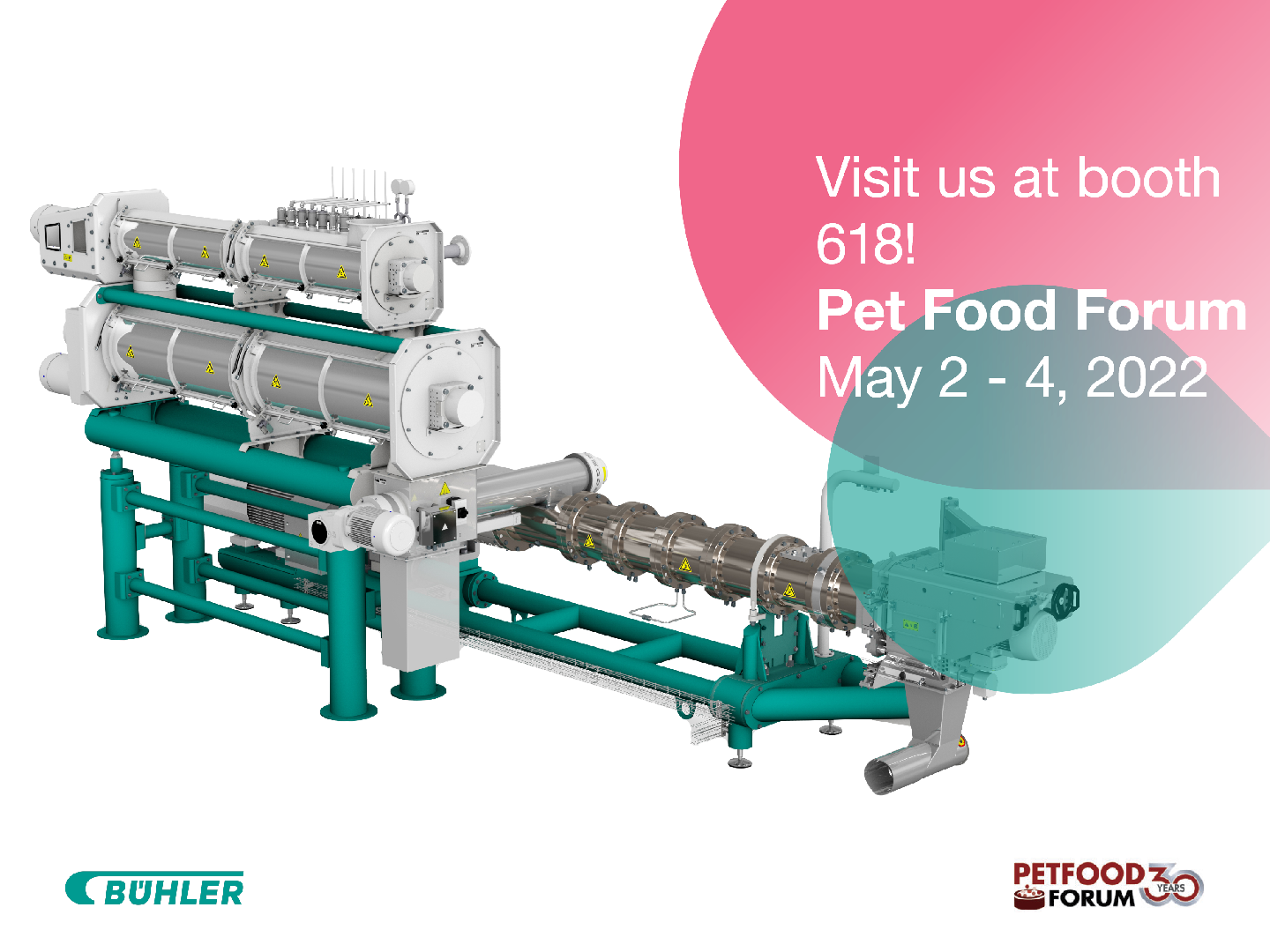 Market Information
Market Information
1+ MIN
27/04/2022
Bühler will participate in Pet Food Forum
Discover how Bühler's new Single-screw extruder can change the way you look at pet food production. Its versatile modular design offers real benefits such as minimized downtime for greater profitability and intelligent recipe memory for consistently high product quality. Visit us and our experts will be happy to assist you!
 Conveying Systems
Conveying Systems
4+ MIN
27/04/2022
State of Conveying Industry Study Reveals Food Processing Industry Outlook
Cablevey® Conveyors, a global specialty conveyor manufacturer for the food/beverage and industrial processing industries, has released results from a new, proprietary survey conducted among food processing companies. The report, The State of Conveying: New Research for the Food Processing Industry, highlights market trends, preferences and challenges related to conveying systems, as well as top marketplace concerns. The findings reveal a high level of automation with most companies operating multiple conveyor lines, yet mixed satisfaction related to the various types of conveyor operating systems.
Key survey findings related to conveyor systems:
• Multiple Lines—83% of companies surveyed operate 6 or more conveyor systems in their facilities with 26% of companies operating more than 25 conveyor systems across business units.
• Conveyor Preference—Among the seven types of conveying technologies survey respondents reported using within their facilities, users were split on the technology most often used, when compared to the technology that generated the most user satisfaction. Respondents reporting using vacuum, pneumatic and cable/disc conveyor technologies most often, in that order. However, cable/disc conveyor systems generated the highest customer satisfaction scores in the study.
• Material Damage – User satisfaction was tied by many respondents to material damage, a critical challenge for those in the food processing industry where the appearance and quality of the end product at times can be damaged by some conveying systems. Relative motion and 'free fall' tended to introduce the greatest levels of material damage; cable/disc conveying was reported as being the top choice to avoid this risk.
• Conveyor Challenges— 54% of survey respondents reported cleaning and maintenance as top challenges related to conveying systems, followed by the corresponding down time associated with these tasks (33%). In addition, 56% of survey respondents reported maintenance issues as the top reason for installing updated conveying systems.
• Selection Factors—Energy consumption and ease-of-cleaning were reported tied as the top factors in the selection process for a new conveyor. Minimization of maintenance came in as the second most critical criterion; initial purchase price was relatively far down the list at #5.
• Evaluation Schedules – 85% said they evaluate their conveying system performance at least every 6 months. Sixty-one percent shopped or purchased a new system within the past 12 months.
Top findings for the food processing industry:
• Industry Growth—91% of respondents reported business growth in the past year.
• Supply Chain—53% of respondents identified supply chain issues as the most pressing industry challenge. Related to this, 39% of respondents cited product shortages as another major issue.
• Agility – 40% of respondents pointed to shifting changes in consumer demand as a challenge, noting the need for agility and rapid response to the market.
Cablevey contracted with independent outside research firm Ascend2, to reach more than 200 professionals at food processing firms including production managers, engineers, and executive managers. The most prevalent product categories being conveyed in the processing facilities included snacks (55%), frozen foods (42%), breakfast cereal (32%), nuts (31%) and coffee (30%), followed by other product types such as pet foods, seeds, beans, specialty grains and hemp.
High-Speed Conveying Systems Critical to Reach Production Goals
'What really stood out in this report was the fact that energy consumption and maintenance issues were cited as the main drivers for conveyor selection and purchase decisions,' said Brad Sterner, Cablevey CEO. 'While we're pleased to see that our cable/disc technology was ranked as the best performing platform to address these concerns, it points out that any automation system, including conveyors, can constantly strive to improve performance and help companies meet both production and sustainability targets.'
'In order to provide food security to a rapidly growing population, suppliers and operators must work together to streamline operations,' Sterner continued. 'The number of high-speed, sanitary conveying systems already in place within food processing facilities demonstrates the critical role they play to help achieve manufacturing goals.'
The Food and Agriculture Organization (FAO) estimates food production needs to increase by 60-70% to feed a global population of 9.3 billion in 2050. For the detailed copy of the survey results, visit The State of Conveying - Cablevey® Conveyors
About Cablevey Conveyors
Cablevey Conveyors is a global specialty conveyor manufacturer that designs, engineers, assembles and services tubular drag cable and disc conveyor systems. With customers in more than 65 countries, the company specializes in moving materials for food/beverage and industrial powder processors that seek food-grade conveying performance with systems that are clean, fast, energy-efficient and cost-effective. For more info, call toll free: 1 (800) 247-3344; Fax: +1 (641) 673-7419; email: [email protected]; or visit https://cablevey.com .
by Cablevey Conceyor
All Pet Food
 Laboratory
Laboratory
4+ MIN
26/04/2022
NeoSpectra by Si-Ware Partners with AB Vista’s Aunir to Offer Customers Affordable NIR Calibration Choices for In-Field Analysis
MENLO PARK, CA - NeoSpectra by Si-Ware, the creator of NeoSpectra material analysis solutions built on single-chip FT-NIR spectrometers, today announced a partnership with AB Vista's Aunir, a global leader in the development and supply of near infrared reflectance (NIR) spectroscopy calibrations. For the first time, the partnership will give customers subscription-based access to all Aunir INGOT NIR calibration models on the NeoSpectra LabStore to empower in-field analysis and decision-making across animal feed, feed ingredients, flour, and milling, pet food, aquafeed, forages, animal by-products, plant breeders, and other specialty products.
NeoSpectra by Si-Ware will implement the full Aunir INGOT NIR calibration database on the NeoSpectra LabStore. The NeoSpectra platform has the first and largest LabStore in the market, offering thousands of calibration models to users from trusted partners around the globe such as labs, researchers, and universities. Today, the INGOT calibration library is the world's most extensive with more than 500,000 analyzed samples and over four million data points. The partnership will provide portable NeoSpectra Scanner users with additional top-tier choices in NIR calibrations across a multitude of industry applications.
NIR analysis is a quick, accurate, and reliable method to measure the nutritional, chemical and physical properties of ingredients and products. Together, Aunir and NeoSpectra by Si-Ware will give users the autonomy to choose the right calibration model to make important business decisions in real-time. Users will be able to measure the integrity of raw materials and ensure their finished product meets specifications. In addition, NeoSpectra Scanner users will have access to the very latest calibrations across various markets and finished products through Aunir's automatic calibration updates when subscribing via the NeoSpectra LabStore.
'Our partnership with Aunir is exciting for our customers,' said Ralph Hewitt, Vice President of Global Sales at NeoSpectra by Si-Ware. 'Historically, NIR users had to build their own calibration models, purchase them for a high price, or search for a partner that had a calibration model that worked with their platform. NeoSpectra by Si-Ware's partnership with Aunir gives them the power to choose which calibration model is best for their business. We will not only offer the models at an affordable price but enhance customer confidence in their business decisions knowing their portable NeoSpectra Scanner uses state-of-the-art calibrations from a leading global developer like Aunir.'
For over 40 years, Aunir has collected data for its INGOT database with a primary focus on measuring and analyzing moisture, protein, oil, fiber, ash, starch, and sugar levels in animal feed, feed ingredients, forages, pet food, milled flours and more. The calibrations represent a range of geographies, growing seasons, and environments for reliable results from most sample types. The Aunir INGOT calibration database and models will be available for NeoSpectra Scanner users to browse and subscribe to in the NeoSpectra LabStore at the end of April.
'Now more than ever, customers are faced with a variety of challenges and important business decisions, particularly to improve their margins and reduce costs while maintaining the best possible product,' said Chris Piotrowski, AB Vista's NIR Services Director. 'Portable NIR analysis puts the power of in-field decision-making in the hands of our customers, and our partnership with NeoSpectra by Si-Ware will make that possible in a way that is cost-effective. Customers will be able to subscribe to our INGOT database calibrations via the NeoSpectra LabStore, which will be a game-changer for accurate measurement in the field and their return on NIR investment.'
About NeoSpectra by Si-Ware
NeoSpectra by Si-Ware's all-in-one, universal material analysis solution platform, built on a family of single-chip FT-NIR spectrometers, enables businesses to bring the lab to the field and makes the concept of analyzing anywhere with high return on investment a reality. Combining portable analyzers that have unprecedented performance and accuracy with the NeoSpectra LabStore, a secure place to discover and download test methods developed by FT-NIR technology experts such as laboratories, researchers, universities, and companies, NeoSpectra by Si-Ware's solutions deliver instant insights to industries such as agriculture, food, life sciences, and others. NeoSpectra by Si-Ware is headquartered in Menlo Park, California, with research and development centers in Paris, France, and Cairo, Egypt. For more information, visit www.Si-Ware.com.
About AB Vista, Aunir and INGOT
AB Vista is a global feed additive business bringing pioneering products and technical services to the poultry, swine, ruminant, and aquaculture sectors. Since its launch in 2005, the company has become a highly respected global player with top three market share positions in its core segments. The business uses its innovative product research, technical services, and nutrition expertise to gather global insights that can be used to provide new ways of thinking to feed compounders, integrators, and pre-mixers. With over 25 years' experience in the NIR field and a global network of laboratories able to analyze feed samples, AB Vista provides the tools and expertise to allow its customer to better balance their ingredients. AB Vista is headquartered in the UK, with regional offices located in the USA, Brazil, Singapore, Spain, India, China, Germany, Netherlands, and Finland. www.abvista.com.
Contact: Katie Padilla, [email protected]
All Pet Food
 Extrusion
Extrusion
4+ MIN
25/04/2022
FAMSUN Pet Food Plant Solution: Creating Life’s Simple Happiness at Industrial Scale
Living in a world that becomes ever more complicated and accepting that the pandemic will be part of today's life for years, many people help themselves become happy again by connecting with simple things like cats and dogs.
Life accompanying beloved pets brings many benefits to pet owners: from physical health to mental wellbeing. That is why the population of pet owners rises continuously amid COVID-19. And that is also the reason why FAMSUN and pet food producers worked hard to bring modern industrial pet food production systems around the world in the past years - serving the needs of millions of pets and pet owners and protecting what's good in life through health, nutritious and tasty pet food.
Innovation: Driving changes for better
Pet parents today care more about the nutrition, health, and well-being available for their pets. For example, nutritious and fresh-ingredient food such as high fresh meat products is a popular splurge item. Many owners are willing to pay extra for innovative choices that can solve allergies, picky eating habits, immune issues. Some are willing to pay extra for 'green' products that are sourced and produced responsibly and are aligned with their family sustainable actions.
At FAMSUN, we move fast to innovate and provide competitive, sustainable, and tailored pet food processing solutions that help producers and investors to seize new market chances and become differentiated in the marketplaces. Our experts of FAMSUN R&D institutes in the USA, Denmark, and China, who have dedicated themselves to the pet food industry for decades, are constantly working on innovations to increase pet food plants' capability and make them process smarter, more efficient, and more sustainable.
FAMSUN has been researching high and ultra-high fresh-meat pet food production technology for years. In 2019, we succussed launched the dry pet food line with up to 70% fresh meat on the market. Since then, our experts have worked on improvement to meet the higher addition demand – and 2021 marks the breakthrough of our solution with several 90%-meat pet food processing lines starting operations in China, Southeast Asia, the Middle East, and South America.
FAMSUN develops specialized equipment such as FE series single-screw extruder, R series twin-screw extruder, CYPZ vacuum coater, etc. for pet food production. These machines are flexible to meet different customized pet food formulas, and the base materials of all product-contact surfaces or parts are food level. FAMSUN CYPZ vacuum coater, especially, allows producers to differentiate their products at the line end through applying different functional liquids onto the food pellets, be it oil/fat to improve energy, flavors to improve palatability, or functional improvers to achieve health.
By introducing FAMSUN innovative and exclusive technologies such as quick-start, waste-controlled preconditioner, intelligent dryer, clean energy machines, and digital services of Manufacture Operation Management (MOM), Manufacture Executive System (MES) and traceability system, as well as advanced Lean Manufacturing and Pull Production concepts, FAMSUN modern industrial pet food solutions provide producers the most possible ways accessing to efficient, responsible, and excellent operations.
At FAMSUN, food quality and safety are the two most essential elements in its solutions. From raw material receiving and fresh meat liquid preparation to product packaging and delivery, every process, equipment, and part of its machines and systems are specially designed to meet the two criteria. We also provide tailored cleaning and disinfection guidelines for every plant to drive biosecurity practices in the pet food industry.
Integration: Turning complex into simple
As an integrated solution provider and a technology partner in the farm-food industrial chain, FAMSUN offers a package of technologies and services from consultation, design, civil construction, manufacture to logistics, installation & commissioning, training, and service to its customers. With end-to-end systematic consideration, design, and execution, producers only have to learn how to operate and manage an advanced modern plant to its best performance and explore its capability to develop and produce competitive products. In addition, FAMSUN's digital and intelligent services and collaborative innovation help drive simplicity and excellence in the whole plant's operation and management.
So far, FAMSUN has delivered more than one million annual production capacity to over 150 pet food producers, including Gambol Pet Group, PureNatural in China, Maxipet in Portugal, AVI-Products in South Africa, BioAlimentar in Ecuador, etc. These producers manufacture over 500 pet food brands to help millions of pets live longer, healthier, and happier lives with their owners.
Together, we can nourish, spark and protect what's good in pets and create pieces of simple happiness in life at scale.
By Famsun
Source: All Pet Food
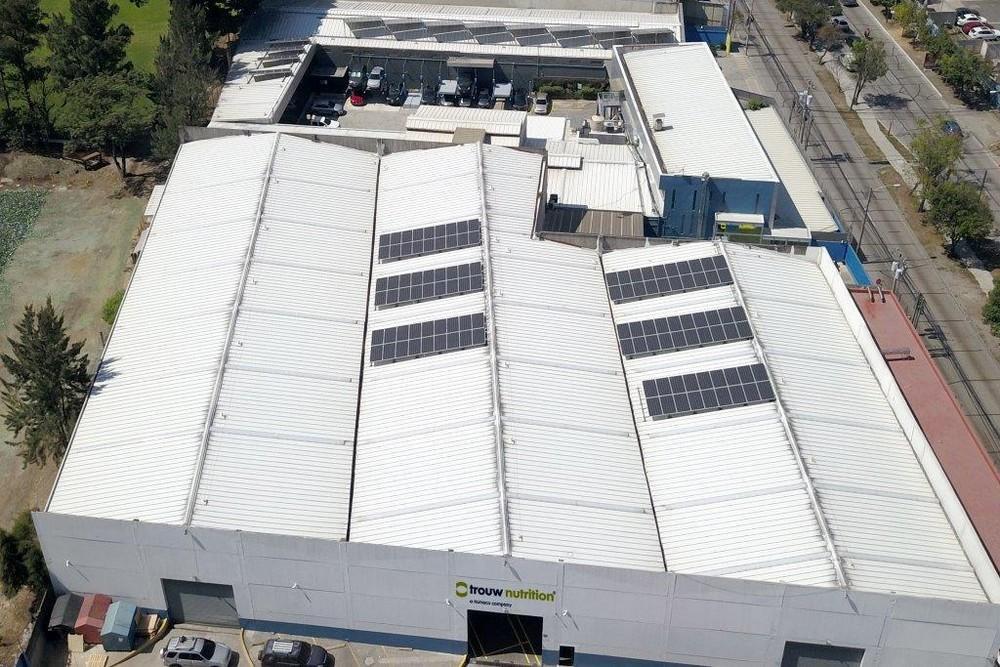 Market Information
Market Information
2+ MIN
22/04/2022
Trouw Nutrition´s plant in Guatemala generates up to 100% of its energy through Solar Panels
Through their mission, Feeding the Future, Trouw Nutrition has made a commitment to help feed the growing population without compromising the resources of tomorrow. Today, in celebration of Earth Day, they are proud to share one of the initiatives that exemplifies their commitment: utilizing solar energy to generate up to 100% of the energy needed to produce premixes and farm minerals at their plant in Guatemala, which supplies several countries in the region. Through two strategically designed phases, their goal has been to replace the non-renewable energy consumption of the premix plant with energy from a sustainable source. Starting in 2019, the first phase included the installation of 100 solar panels with a capacity of 35 kW that covers up to 50% of the energy consumption of the premix plant. The second and last phase considered 112 additional panels, with a capacity of 44.8 kW, and with this, achieving their goal of covering energy needs up to a 100%. This project implies that the plant´s monthly capacity of more than 11,300 kW of energy, equivalent to almost 136,000 kWh during the year, comes now from a renewable source. Thanks to this project they have reduced their carbon footprint, which represents 54,653 kg of carbon dioxide less being released to the environment per year. This reduction is equivalent to planting 82 trees in that same period. With the commitment to care for the environment for new generations and fulfilling their mission of Feeding the Future, Trouw Nutrition prioritizes sustainable projects investing their capacity to innovate, scientific knowledge and resources in initiatives that lead towards a better future. The transition to clean and renewable energy in their plant in Guatemala is just one example of this, which we hope can inspire others to change. by Trown Nutrition All Pet Food
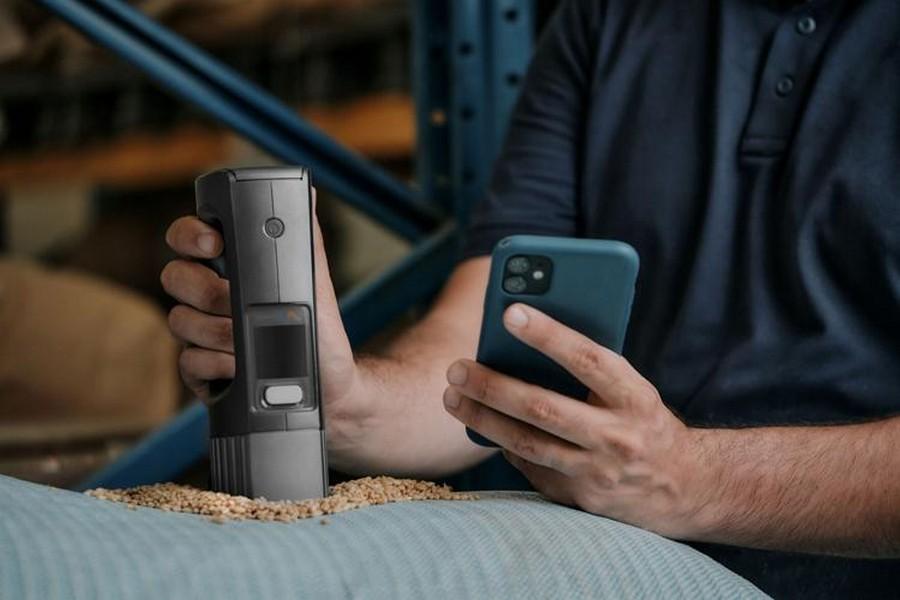 Laboratory
Laboratory
3+ MIN
21/04/2022
NeoSpectra by Si-Ware and NutriControl to Provide Customers with Improved Solutions for Accurate In-Field Materials Analysis
MENLO PARK, CA - NeoSpectra by Si-Ware, the creator of NeoSpectra material analysis solutions built on single-chip FT-NIR spectrometers, has announced a partnership with NutriControl Analytical Solutions, a leading laboratory network based in the Netherlands serving the animal feed, dairy and food sectors. The partnership leverages NutriControl's industry-leading calibration experience to provide users of NeoSpectra by Si-Ware's portable NeoSpectra Scanner with quick, accurate materials sampling capabilities for a broad range of applications, including animal feed, food quality and pet food, empowering users with improved quality assurance and on-demand decision-making.
This partnership expands the applications available to customers in NeoSpectra by Si-Ware's NeoSpectra Lab Store, a secure place to discover and subscribe to calibration models that are developed by NIR experts such as laboratories, researchers, companies and universities. From the NeoSpectra Lab Store, NeoSpectra Scanner users will now be able to subscribe to the calibration lines needed to perform accurate analysis across industry applications such as agriculture, food, life sciences and others.
'We're excited to partner with NutriControl on this endeavor and pair their NIR calibration expertise with our user-friendly portable technology,' said Ralph Hewitt, vice president of global sales at NeoSpectra by Si-Ware. 'Our team is dedicated to developing industry partnerships that strengthen our product accuracy, provide customers with the most options in the calibration lines they use, and introduce tangible benefits to our end users. Reliable calibration is essential to achieving fast and accurate materials analysis, and we feel even more confident in the accuracy of the results from our NeoSpectra Scanner by working with proven calibration partners like NutriControl.'
NutriControl develops NIR calibration lines and NIR cloud services that can be leveraged to analyze feed, grains, dairy products, silages, pet food and many other raw materials. The company's calibration lines are based on a significant amount of classical wet chemical tests, benefiting NeoSpectra by Si-Ware's global customer base by providing the necessary amount of variation for accurate use across multiple geographies.
'Our customers have long understood the need for accurate materials analysis, and now more than ever, they are searching for portable solutions to conduct real-time sampling and accurate measurements,' said Jörgen van den Ende, managing director at NutriControl. 'Through our collaboration with NeoSpectra by Si-Ware, we now have the opportunity to implement our calibration lines on a portable system that will bring value to all global users.'
About NeoSpectra by Si-Ware
NeoSpectra by Si-Ware's all-in-one, universal material analysis solution platform, built on a family of single-chip FT-NIR spectrometers, enables businesses to bring the lab to the field and makes the concept of analyzing anywhere with high return on investment a reality. Combining portable analyzers that have unprecedented performance and accuracy with the NeoSpectra Lab Store, a secure place to discover and download test methods developed by FT-NIR technology experts such as laboratories, researchers, universities, and companies, NeoSpectra by Si-Ware's solutions deliver instant insights to industries such as agriculture, food, life sciences, and others. NeoSpectra by Si-Ware is headquartered in Menlo Park, California, with research and development centers in Paris, France and Cairo, Egypt. For more information, visit Si-Ware.com.
About NutriControl
NutriControl is an independent commercial laboratory that operates in the feed, food and dairy markets. It is a part of the Royal Agrifirm Group, a cooperative of approximately 10,000 Dutch farmers and growers with over 3,000 Agrifirm employees. NutriControl is ISO-17025 accredited and has around 100 laboratory employees conducting more than 900,000 tests a year using more than 300 different methods. NutriControl is engaged in NIR technology since 1980 and is a global player in the field of NIR service, with a broad product portfolio. It has its own dedicated NIR department, which supports approximately 2,000,000 NIR-predictions a year for their worldwide customers. Through years of experience in the NIR field, NutriControl has a huge and unique database, with which high quality calibration lines are developed and maintained. For more information, visit www.nutricontrol.nl.
Contact: Katie Padilla, [email protected]
All Pet Food
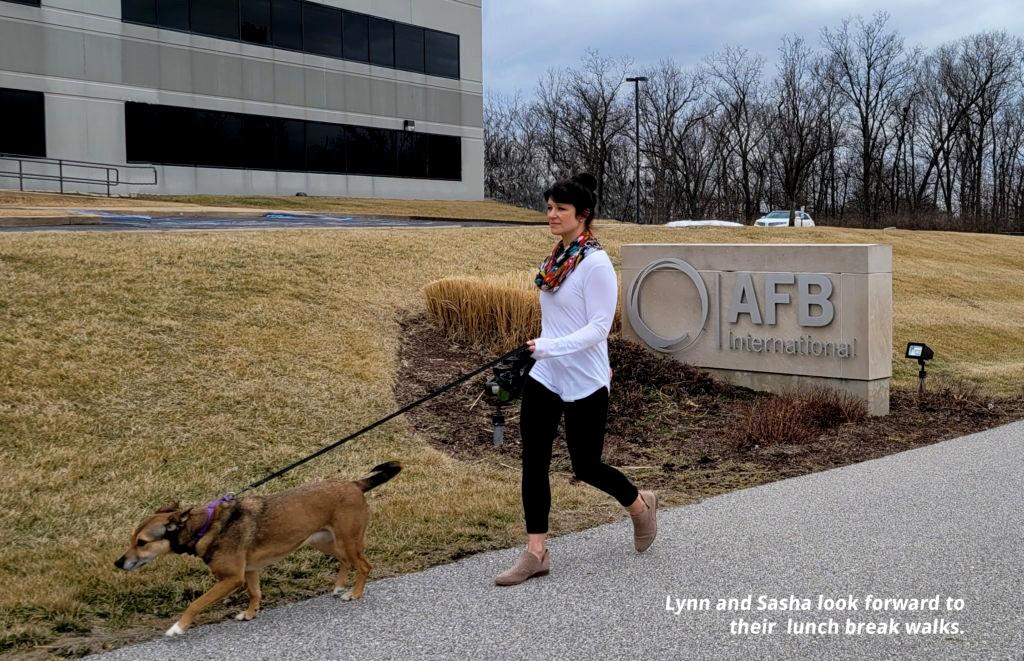 Palatants
Palatants
2+ MIN
20/04/2022
Our Coworkers have Fur and Tails !! Welcome to AFB's Dog- Fiendly Worplace
'In 2017 AFB's global headquarters instituted a dog-friendly workplace, and the benefits have far exceeded expectations. Having dogs in the office complements AFB's positive culture and helps create a happier, healthier workplace,' says Morgan Clarkson, Global HR Director. And employees agree. 'I believe having Sasha here in the office with me helps lower my stress levels. When I'm having a hectic day of meetings and calls, taking her out for a short walk helps me take a mental break and re-energize. And I get the added benefit of a little exercise,' says Lynn Cruz, Quality Assurance. Dogs in the office also encourages a more collaborative culture. Many relationships started simply because one colleague stopped to say hi and pet another employee's dog. 'Sometimes I think my coworkers like seeing Phillip more than me,' jokes Greg Hibbard, Product Manager. Many more companies are also learning the benefits of a pet-friendly workplace. 'A study conducted by Nationwide, in partnership with the Human Animal Bond Research Institute (HABRI), revealed that 90 percent of employees in pet friendly workplaces feel highly connected to their company's mission; fully engaged with their work; and willing to recommend their employer to others. In contrast, less than 65 percent of employees in non-pet friendly workplaces made the same claims. Employees in pet friendly workplaces were also more likely to stay with their company in the future.' Additionally, a dog-friendly work environment helps attract talent. 'I was very excited when I learned AFB was a dog-friendly workplace and that really drew me to the company. Seeing dogs at work every day definitely makes work more fun! We just got a new puppy and I'm looking forward to when she's old enough to come to work with me,' says Emma Koziel, Customer Engagement Scientist. If you are looking for a company where dogs are welcome in the office, take a look at AFB International. Check out our open positions. A career at AFB offers exciting opportunities for development and growth while surrounded by our furry friends. by AFB International All Pet food
 Formulation
Formulation
5+ MIN
18/04/2022
Dogs Are Not Small Humans
As a veterinary nutritionist, I must first focus on the differences in nutrition and feeding behaviors in dogs. As humans, we hopefully eat a varied diet which may help to meet our nutritional requirements. (Note, I am not a human nutritionist.) That said, most of us do not understand or calculate our total nutritional needs nor do we measure each nutrient in our meals to ensure we are getting enough, or too much of, each nutrient. My guess is that this likely leads to subclinical or clinical deficiencies in nutrients we are typically blissfully unaware of until there is an issue. What we eat is often dictated by availability, cost, and culture. I often think we do better with nutrition for our pets. Over the years we have studied canine nutrient requirements and have identified essential nutrients that when fed at specific amounts prevent deficiencies over time. We have also identified functional ingredients that further help to improve health when given at specific amounts. We utilize this information when formulating complete and balanced dog foods. When feeding dogs human table foods and creating homemade diets which do not take these requirements into consideration, we can see many nutrient deficiencies.1,2,3,4 The most regularly encountered in the literature are zinc, choline, copper, EPA + DHA, calcium, iron, thiamin, riboflavin, cobalamin, vitamin D, and vitamin E.1,5 Based on experience another common nutrient deficiency when dogs are fed homemade poultry-free diets is linoleic acid. In addition, since it is not commonplace for most owners to calculate the energy content of the diet they are feeding, dogs will often be underfed if they are large dogs and over-fed if they are small dogs resulting in weight loss or gain, respectively. Humans and dogs have significantly different nutrient requirements. Dogs have a higher protein requirement, and they cannot produce vitamin D from the sun. For humans, vitamin D is only conditionally essential since it can be synthesized with ultraviolet B radiation of the skin from 7-dehydrocholesterol. Therefore, supplementation is only needed when exposed to ultraviolet light is limited. However, dogs (and cats) have very little 7-dehydrocholesterol in their skin and so they can't produce vitamin D in this manner, and it must be in the diet. Unlike humans, dogs can produce vitamin C during the normal metabolism of glucose and thus do not have a vitamin C requirement. Dogs also have unique feeding behaviors as anyone who has watched them gobble up cat litter-covered poop pops from the box can attest. At this point in their domestication dogs are dependent on humans for food. As for their natural feeding behaviors, we can look to feral populations and laboratory environments to gain information. Wild dogs hunt in packs and typically hunt medium-sized to large prey including deer and caribou. A dog can readily consume their entire daily caloric needs in just a few minutes in a single meal. Conversely, dogs offered free access to food in a laboratory setting will eat 4 to 8, or frequent smaller meals throughout the daylight hours with some breeds also eating during the night as well.6 So although adult dogs often do well with multiple small meals throughout the day they can also tolerate twice-daily feedings. Our dogs seem to enjoy certain foods, treats, and novelties and these offer a way to stimulate them in what could otherwise be a monotonous environment. Yet, we would not expect a dog to smell and take the time to savor its meal the way we might if we went home for Nonna's cooking. That means that using food and food dispensing toys to encourage environmental and mental stimulation and hand-feeding while training is very important. However, please keep in mind that many dogs do well, or even better, with a consistent well-balanced diet and do not necessarily need a rotation of flavors or types of food. There is one area where dogs and humans are similar. Each dog, like each person, is an individual. While one dog may benefit from a high-fat, high-protein diet, fed once daily to accommodate for its athletic activities, another dog may experience severe GI upset when fed in that manner. It is common for nutritional fads for humans to make their way into marketing for new dog foods which can pose nutrition and health risks. One concerning trend is to try to incorporate new and novel ingredients that are not well understood into the diet and supplements. While benefits of these ingredients are certainly possible so is the risk of toxicities and nutrient interactions. Companies should exercise caution when investigating new ingredients and owners should be careful about using novel or multiple supplements without discussing it with their veterinarian. It is not just nutrition and metabolism that makes dogs different from humans, but fundamentally who they are as a species. Dogs are meant to run and sniff. They need their human to fulfill their part of the human-animal bond by providing an enriching life alongside rules and boundaries that keep dogs safe and happy. Their individual breeds may also be genetically wired to herd, hunt, protect, or be a companion. When we try to make them into small humans by carrying them when they can walk and not giving them opportunities to explore and be comfortable in their environment with and without us, we cut off a portion of who they really are. When we do not help them understand appropriate or inappropriate behavior through consistency and training and providing appropriate outlets for behaviors that can be dangerous in certation situations, we see an increase in anxiety and destructive behaviors. Over the years I have had more and more dog owners requesting medication to modify anxiety and undesirable behaviors when it would be more appropriately managed with behavioral modification and preventative measures such as training and exercise. While there are times when medications can reduce stress enough to help make behavioral modification more successful, it is not meant to be the quick-fix people desire. The best measure to take against having your beloved pup live its healthiest life mentally and physically is to remember they are in fact dogs, with different nutritional and behavioral needs than humans. by Renee Streeter, DVM, DAVCIM - BSM Partners
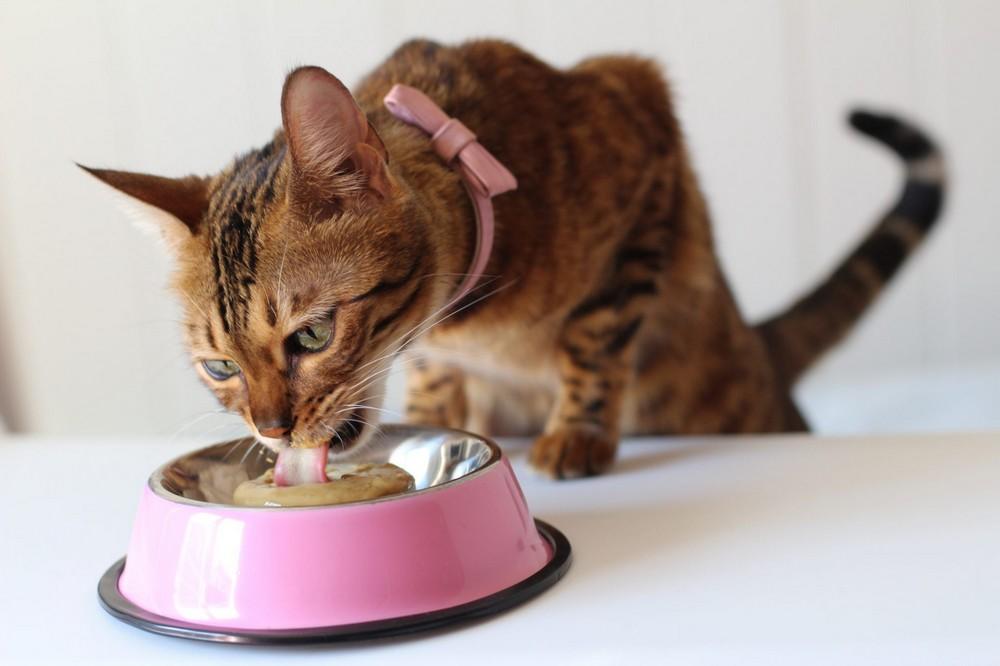 Vitamins
Vitamins
2+ MIN
13/04/2022
5 ways cats can benefit from krill
Why? Because krill is rich in health-promoting omega-3 fatty acids EPA and DHA, choline, astaxanthin, and marine proteins. All these essential nutrients are important for the healthy development and maintenance of a cats' body.
More than that, omega-3s found in krill play a very important role, as both cats and dogs can't produce them naturally and rely on their diet to maintain healthy levels. Here are some ways cats can benefit from having a diet that includes krill.
Read more on how important is the right omega-3
1. Skin Care and Coat Health
Fat is very important for healthy skin and coat in cats. Lack of fatty acids can initially result in a dull, dry coat and itchy skin, as they are crucial for the skin and coat barrier. A regular diet based on essential fatty acids like those found in krill is therefore essential to keep the skin barrier fit and the coat shiny. They may help prevent dandruff and reduced shedding which can lead to fewer hairballs. Being anti-inflammatory, they may also prevent skin problems related to e.g. atopy or allergies.
2. Heart Support
Omega-3s are important for a healthy heart and can help reduce inflammation in cats that have existing heart disease. They may also lower blood pressure and prevent dangerous blood clots that could be damaging to the heart.
3. Healthy Joints
Krill's omega-3s have anti-inflammatory properties and may contribute to reducing joint pain caused by aging or osteoarthritis. Several studies show that senior cats suffering from osteoarthritis-related joint pain had improved motion and had more energy after receiving a consistent diet based on omega-3s.
4. Improved and Stronger Immune System
Omega-3s and astaxanthin found in krill strengthen the immune system in your cat by making immune cells more flexible and resistant. A healthy, balanced diet that includes omega-3s and omega-6s can support and enhance the immune system of cats of all ages. Even perfectly healthy cats can benefit from the immune-boosting properties as their risk for serious illnesses increases with age.
5. Cognitive Function
Omega-3s and choline found in krill are essential for the cognitive and behavioral function of cats in every stage of life. They support brain development, the learning process, the nerve transmitters and affect the overall mental well-being of cats. It may also diminish the amount of neuronal loss happening when aging. Giving cats pet food or supplement with krill can therefore help their mind and vision to stay strong and focused.
It is true omega-3 fatty acids can do wonders for your cat's health and wellbeing, but for that to happen your furry friend needs to get enough of these essential nutrients from diet alone.
Krill is also a sustainable marine source
Besides being a natural source of health-promoting nutrients for pets, krill is highly sustainable and therefore environmentally friendly, reducing your cat's carbon paw-print.
by Written by Ana Dumbravescu - Marketing Manager Qrill Pet
 Trends
Trends
5+ MIN
12/04/2022
Por Luciana Chippano
Pet Food Industry Trends in 2022
In this article, we will discover the trends on the way to step strong in 2022 in the pet food industry. The 2020 pandemic has brought about a resounding change in how many people think, live, and position themselves in the world; this inevitably translates into how they treat, care, and provide for their pets. In this sense, the most expected is to find that pet owners prefer different options than what they used to choose in the pre-pandemic world. Factors such as being more at home, reducing spending on leisure and entertainment, increasing environmental awareness, the sustainability of products, and health care, have bloomed in new trends. Although we have already seen them appear in 2021, in 2022 they are no longer optional. Instead, they are a must in the game of demand. We already know that many people decided to add a 4-legged friend due to the pandemic. A large part of the 'new owners' are millennials living alone who have found themselves immersed in loneliness that a pet could balance. Generation Z is another example of young people choosing pets at a very young age. The smallest races are the most preferable The high rate of urbanization, the small size of households, and the practicality when it comes to caring and cleaning, make cats the most chosen pets, which particularly happens with millennials and men! Secondly, by logic the small dogs. These types of pets have many strong points: • On the one hand, we know that young people and young adults live in (much) smaller houses than a few years ago, around 35-40 square meters. Imagine a Rottweiler in a studio apartment! In addition, many countries have imposed bans on certain large breeds as considered a social risk. Thus, the options decrease; the most logical and empathic decision, both for the human and the animal, is to look for one that, thanks to its size, can move comfortably and enjoy all the spaces of the house no matter its size. Cats, for instance, can find places to rest everywhere, even in a studio! On the window sills, in cool and sunny corners, on armchairs... • On the other hand, this type of pet greatly accompanies the lifestyle of today's young adults: often with short and long trips or stays away from home. These animals are easy to care for, either by inviting a friend or family member to be at home or by moving them to someone else's home. They are, in a way, children adapting to the needs of their parents. Feeding decisions to make Pet humanization is a trend that has been present since 2020, since pet owners, especially the youngest, are convinced to transfer their own feeding decisions to pets as much as possible. Their logic is linear: "If I decide for my health, why wouldn't I make it to take care of my pets as well?" In fact, between 2016 and 2020, there was a 41% increase in launches of this type of food. With increasing awareness, owners are broadly opting for more natural diets (such as the BARF diet) or science-based formulas in which each ingredient performs a specific function for a dog's health. Pets are not an expense but an investment Of love, companionship, support... Pets are no longer seen as "entertainment" and quickly became family members. And just as no one thinks that buying organic food for their (human) children is an "expense" but rather an investment in their health, the same has begun to happen with pets. The financial company Morgan Stanley forecasts an increase in spending in the industry of up to three times, reaching USD 275 billion in 2030. Additionally, a recent AlphaWise survey reported that nearly 2/3 of young adults ages 18-34 plan to add a pet to their lives within the next 5 years, resulting in a 14% increase in pet possession. In the last 12 months, 35% of pet owners spent more money on food, veterinary appointments, accessories, toys, and various products for care, hygiene, and well-being. Focus on sustainability In 2020, 21% of all new food launches worldwide emphasize their improvements on sustainability, both at the level of production, packaging, and recycling. Simultaneously, pet owners are beginning to pay more attention to these details when choosing food, as they are more aware of the importance of protecting the environment and the implications of continuing to contribute to its pollution. Animal mental health is important The pandemic and lockdowns worldwide impacted pets' mental health, which is still analyzed today.Talking about anxiety in pets is, for example, just a result of how the mental health of pets began to have greater importance. The fact that pet owners are working from home and that children play all day in spaces shared with their pets has inevitably affected animals' behavior. However, more time is still needed to investigate the real impact at the mental level in each case. Direct to consumer The pandemic significantly accelerated the insertion of electronic commerce in our industry, a change that had been happening very slowly and progressively. The traditional brands have always had to reinvent themselves betting on digital marketing, something somewhat forgotten in our sector, and, in turn, new ventures focused directly on this exchange appeared. Thus, contact between manufacturer brands and consumers was strengthened, bypassing the exchanges on third-party platforms or supermarket or store chains. The rising popularity of plant proteins and meat alternatives Plant-based ingredients and alternative proteins are gaining much ground in research and testing within the pet food industry, due to consumer demand for meat alternatives (especially from millennials). Ingredients such as cereals, insects, or protein grown in the laboratory are the innovation focus at the service of the pet food industry. Trends? There are many! No doubt, the general trend focuses on a greater awareness of the physical and mental pets' health (and this is in line with self-care awareness increasing in people). A strong bond between people and their pets' results in inevitable changes in our market demand. These should drive and motivate us to search for better offers, solutions, and products. Which trends do you consider are the most important for the pet food Industry? by: All Pet Food
 Home
Home
5+ MIN
11/04/2022
Partnering customers in a new pet food era
Pet ownership is on the rise. This is in part due to the increase in single person dwellings and small family sizes, causing people to look for companionship to enrich their homes, a place studies show people are spending more of their free time. Now with an upswing in working-from-home and social distancing, pets are helping to fill an even greater void in times of uncertainty. As a result, it is estimated that the global market for pet food will reach $128.4 trillion by 2024, growing at a CAGR of 4.5 percent between 2019 and 2024. On the back side of this tremendous growth story is an increasing awareness of the environmental footprint of pet food, with estimates that for dogs and cats alone, their diet accounts for as much as 25 percent of greenhouse gas emissions of global meat production. Human-led trends driving growth in pet food sector In line with the growing pet humanization trend, many owners would more likely make compromises when it comes to the quality of their own diet before that of their pet's. Indeed, pet food is viewed as an essential product by pet owners – not unlike baby food. In addition to viewing pets more like members of the family, other key human-led trends influencing this sector include: increased online shopping demand for personalized foods demand for foods promoting resilience & well-being, including clean label options made from natural ingredients demand for foods with a smaller environmental footprint, including vegetarian & hybrid options Protein alternatives for pet food: challenges & opportunities Much of pet food today is still produced using rendered meats, muscle tissue and other meat co-products taken from the human food industry. Poultry is the most common animal protein source, making up roughly 80 percent of the meat protein used in pet food globally. As more consumers reduce their animal protein intake in favor of a flexitarian diet, this same shift is now evident in pet food selection, particularly in key pet food markets. When it comes to protein alternatives for pets, there is still a lot of debate about what constitutes the right nutritional balance. For example, while many dogs are able to digest and get the nutrients they need from plant sources, the same cannot be said for cats, which are obligate carnivores, requiring specific compounds, like taurine, an amino sulfonic acid, to be healthy. Because cats lack the enzyme to produce taurine on their own, they must absorb it from their food or via supplements. Plant-based ingredients have been integral ingredients in pet food for decades, however there is now increasing demand for vegetarian products as well as hybrid options where the bulk of the ingredients are based on plant or single-cell protein sources, with a greater focus on protein quality and nutrition. This accounts for the formulations now seen coming onto the market made from ingredients like kale, pumpkin or microalgae, as well as products from more established plant-based protein sources such as pea, soy or wheat. Pulses, the seeds of legumes, have a relatively high protein content and can be grown in a variety of climates; protein isolates from them are used to create nutritious cat milk; to produce dry and soft kibbles, as well as dental sticks and chew bones. Other ingredients, now gaining more traction, although not vegetarian, include the use of insects in pet food, given the high-quality proteins and fats extracted from them offer similar nutrition profiles to meat. Likewise, cultured products, which rely on a one-time sample (e.g., from a chicken) to produce 'animal-free' lab-grown meat protein, are just entering the market. Both reduce the environmental burden of pet food given they require fewer resources during the rearing or growing phase as well as during processing. GEA accompanies pet food customers from the ground up With more than 80 years of experience in the food processing industry, we support customers already at the pet food ingredients level – to meet color, texture and flavor requirements while also preventing bacterial contamination – all the way to creating new food formats, while offering solutions for automation and greater process control, to ensure efficiency and profitability. Whether customers are looking for a single machine to boost existing line performance or a complete solution for a new factory, GEA technology covers a wide variety of pet food processes, including spray and freeze drying, evaporation, filtration, meat preparation, extrusion and packaging for several pet food areas: Pet food ingredients Wet & dry pet food Pet treats Freeze dried pet food From developing innovative shapes, incorporating alternative proteins to creating unique textured products, our customers benefit from GEA's deep expertise and technology resources, which include the R&D facilities at our new Pet Food Experience Center (PEX), in northern Italy. The recently commissioned 1000 sqm facility is home to a team of 30 employees, including process and mechanical technicians and experienced staff running the laboratory where chemical, chemical-physical and rheological analysis and nutritional/organoleptic testing helps drive the co-development of pet food product innovation in cooperation with customers and industry partners. The center houses a complete solution line with the latest machinery technology for each processing step, including: mixing & milling section (flour mixer, hammer mill & plansifter) preparation section (grinders, mixers and emulsifiers) extrusion & inserts area (pre-conditioner & twin cooking extruder) tumbler & finishing section (tumbler, spray unit & flavoring drum) drying zone (static & continuous dryer) Customers can also attend interactive pet food workshops for hands-on learning to understand: how dry pet food extrusion-cooking technology works what the main process requirements are how to operate & maintain the equipment what role digitalization plays & how to use it in processes The facility also provides the ideal training ground for a customer's employees to learn about efficient processing and best practice, including: selection of raw materials, raw material intake, handling, weighing and dosing, mixing, grinding, conditioning, extrusion-cooking, forming, drying, coating and storage/packaging. These learnings can then be applied on the machines and line available at the PEX. By Klaus Raths, Head of Strategy and Business Development, GEA Food & Healthcare Technologies
 Dogs
Dogs
5+ MIN
08/04/2022
Performance Trace Minerals Help Manage Canine Atopic Dermatitis in Dogs
Often an allergy is overlooked by the pet parent. One such condition is Canine Atopic Dermatitis (CAD). Canine Atopic Dermatitis is a hypersensitivity or allergy of the skin that causes inflammation or irritation. In fact, it's the second most common allergenic skin disease, second only to fleas. It's quite common in dogs, but atopy can also affect cats as feline atopic dermatitis. Allergic reactions can be brought on by normally harmless substances like grass, mold spores, house dust mites and other environmental allergens. But it can also be caused by an internal allergy, such as food. CAD starts with an itchiness of the skin prompting your dog to begin scratching. Just like humans, dogs have normal staph and strep bacteria on the skin surface, but with excessive scratching the skin may break. When this happens, staph or strep bacteria may enter the broken skin and cause a bacterial infection. CAD can make life uncomfortable for your pet and, in its worst case, can affect their attitude and overall well-being. Unfortunately, symptoms of CAD vary, making it hard to diagnose. Some dogs have intermittent itchiness, so it's not really a problem, but it may progress to severe skin irritation causing constant discomfort with chronic or almost constant itching, biting or scratching of the skin. If not controlled and treated, this may lead to significant skin damage, hair loss, loss of sleep, possible infection or other complications. What Causes Dermatitis in Dogs? Our family companions are sensitive to allergens just like we are as humans. Pets suffer from seasonal allergies and fleas — as well as have reactions to shampoos or detergent used to clean our pet's bedding. An outside dog may have allergies to sawdust, straw or hay used for bedding or even normal grasses and plants in the yard. Now take that one step further, they may also have sensitivity to specific food-borne allergens or a medication. Canine Atopic Dermatitis Treatment Options There are two effective medications for CAD — glucocorticoids and cyclosporine. While both products have shown efficacy in controlling the itchiness associated with CAD, they can negatively affect hair growth and in some cases, cause a dog to lose its hair. Research has proven that zinc — an essential trace mineral — is a constituent or activator of at least 300 known enzymes, including those important for skin and wound healing, as well as cell replication. Rapidly dividing cells, such as those of the epidermis or skin, are dependent on zinc to provide a strong skin or epithelial barrier against bacteria. This is important, as between six and 20% of the zinc stored in the body — human and animal — is in the outermost epithelial layers of the skin. Interestingly, the lining that protects the gastrointestinal and respiratory tracts is also protected by an epithelial layer. To demonstrate the potential superpowers of Zinpro zinc, Zinpro Corporation partnered with McKeever Dermatology Clinics based in Minneapolis, Minnesota, to prove that supplementation of this special form of zinc in a dog's diet can help reduce the severity of CAD. The research project started with 36 dogs diagnosed with CAD and on a controlled glucocorticoid or cyclosporine medication program and were under a veterinarian's care for more than one year. Each dog in the study was evaluated using the Canine Atopic Dermatitis Lesion Index (CADLI) scoring system. The veterinarians and pet parents were asked to score how itchy their pet was using a scale ranging from a normal dog with no itchiness (0) to a dog with almost constant itching (10). Each dog received a supplement that contained a combination of ZINPRO® zinc methionine, biotin and essential fatty acids, or a placebo with biotin and essential fatty acids but no zinc in a random order. The biotin and essential fatty acids are key to maintaining skin structural integrity and functionality and are important to some immune cell functionality too. This was a double-blind research study, so the veterinarians didn't know what the client was getting, and the pharmacist didn't know what they were dispensing. Each dog received one of the two treatments for 12 weeks, and then switched to the opposite treatment for another 12 weeks. Note: each dog received both treatments, ZINPRO and Placebo in a random order. Each dog was evaluated using the CADLI scoring system every four weeks of the study. After dogs had received the ZINPRO zinc methionine treatment for eight weeks the following results were found: 44% reduction in CADLI score with no change in dogs receiving the Placebo treatment. 69% of dogs on cyclosporine and 55% on glucocorticoids were able to decrease their medicinal dosage by half without incurring an allergy flare. Visual observations revealed an improvement in skin and coat quality. Zinc Helps Control Canine Atopic Dermatitis People have asked, 'Why can't I just apply a zinc methionine cream to the skin of my dog?' Well the interesting thing about ZINPRO zinc methionine is that it works from the inside out, strengthening the skin and immune system to respond to allergens in the external environment or internal food-borne or medicinal allergens. Zinc is critical to that protective epithelial barrier and/or lining and a key component and building block in both the skin and immune system. That's one of the real keys to this study: It helps demonstrate that not only are we helping enhance the immunity of these animals, but we're helping to improve the efficiency of their immune systems to make them more resilient against environmental or internal allergens. Zinpro has conducted dozens of studies that prove zinc from Zinpro Performance Minerals® (ZINPRO zinc methionine and Availa®Zn) can improve the integrity of the lining of the gut by 15% to 40% and improve the outer skin of the body by over 40%. To learn more about canine atopic dermatitis and how zinc from Zinpro Performance Minerals can help you manage this allergy of the skin, visit our website. To learn about feeding performance trace minerals in your dog's nutrition plan, contact a Zinpro representative today. Written by: Dr. Dana Tomlinson - Zinpro: Dr. Tomlinson earned his doctoral degree in animal science – ruminant nutrition from Virginia Polytechnic Institute and State University. He directs aqua, equine and companion animal research and provides technical nutritional services for the Zinpro RNS specialty team worldwide.
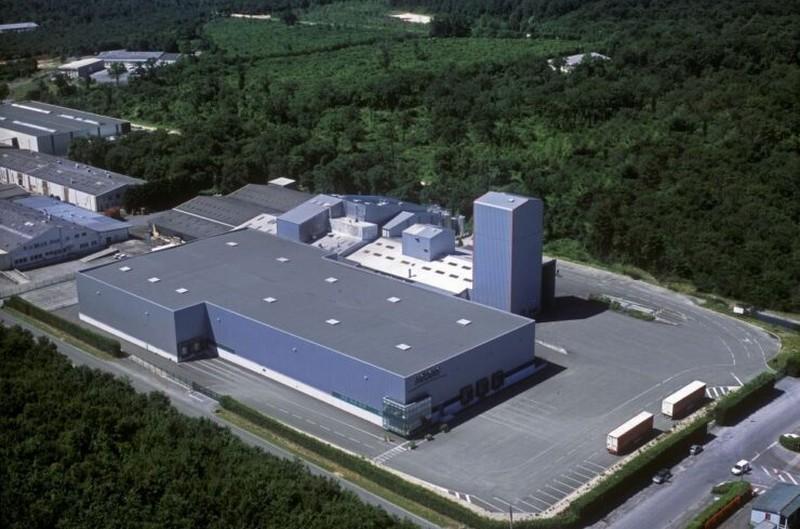 Market Information
Market Information
1+ MIN
06/04/2022
United Petfood announces the acquisition of Neodis Mornac
The acquisition strengthens the position of United Petfood as full-service private label pet food producer and gives customers access to a complete range of inhouse made products. According to United Petfood's board of directors, 'The acquisition of this pet food factory based in Mornac, near Angoulême, offers us new opportunities for growth and synergy in a fast moving market'. The Neodis factory 'la Braconne' in Mornac has been producing dry pet food for both dogs and cats since 1976. The French factory employs around 50 people and has a high-quality production site. This takeover strengthens United Petfood's position within the pet food manufacturing market. With the additional production plant in France, United Petfood Group operates now out of 20 pet food facilities situated in 8 different European countries. The takeover is in line with the strategy of United Petfood to reinforce and grow the business. by United Pet food All Pet food
 Dogs
Dogs
2+ MIN
05/04/2022
Dermatitis, gastropathy among top pet insurance claims
Using its database of more than 1.1 million pets, the insurance group has analyzed more than the 1.35 million claims it received last year for treatment related to medical conditions impacting dogs and cats. For the 10th year in row, skin allergies were the most common health issue affecting dogs, with more than 335,000 individual claims received. Meanwhile, for cats, feline cystitis, or lower urinary tract disease (LUTD), was the most common medical condition, receiving more than 16,000 individual claims. 'When we talk about protecting pets from the unexpected, there can be a temptation to jump straight to big ticket items, like cancer or orthopedic disease,' says Nationwide's chief veterinary officer, Jules Benson, BVSc, MRCVS. 'While these are definitely situations where it's beneficial to have pet health insurance, the idiom, 'common things occur commonly' runs true.' The top medical conditions prompting veterinary visits for dogs and cats last year (according to Nationwide) are as follows: For dogs: Atopic or other allergic dermatitis Otitis externa Enteropathy Gastropathy Benign skin neoplasia Pyoderma and/or hot spot Anal gland sacculitis/expression Degenerative arthritis Periodontis, tooth infection, cavity, or abscess Canine cystitis For cats: Feline cystitis or lower urinary tract disease Renal disease or failure Gastropathy Periodontis, tooth infection, cavity, or abscess Enteropathy Hyperthyroidism Diabetes mellitus Otitis externa Feline upper respiratory disease complex Atopic or other allergic dermatitis For a single dog, the highest cost from the top 10 conditions came in at just over $16,700 for degenerative arthritis, Nationwide reports. For cats, the highest cost was more than $19,000 for feline cystitis. The insurance group also covered more than 9,300 individual claims for 'fever of unknown origin/undefined' diagnoses in cats. by Veterinary Practice News
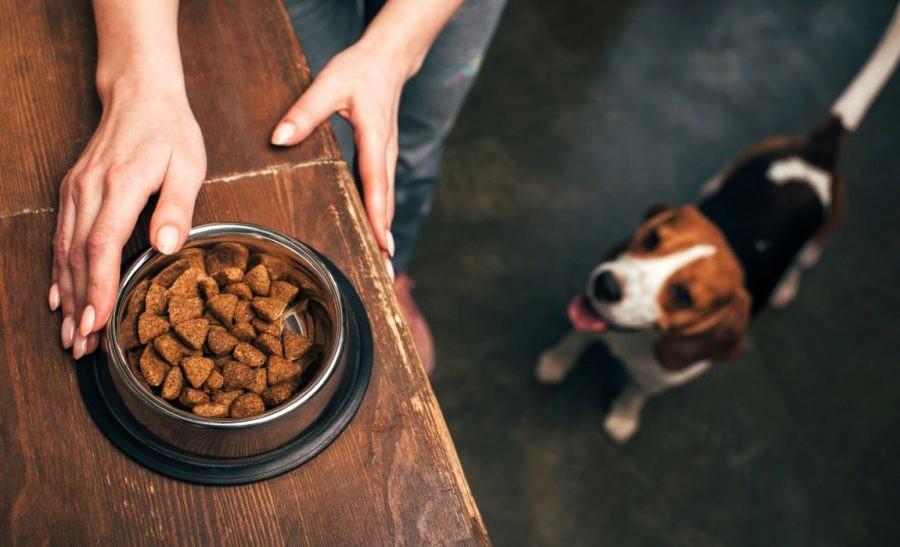 Formulation
Formulation
4+ MIN
04/04/2022
Myth-Busting False Claims about Pet Food
In this feature of The Whole Bowl, we want to provide facts that debunk the most startling false claims often made about pet food. PFI's members make 98 percent of all U.S. pet food and treats. For us and for our members, pets are part of the family. We understand the careful thought pet lovers put into what they feed, and how they care for, their dogs and cats. As pet food makers, our members know they are responsible for providing the sole source of nutrition for most of America's pets—they take the responsibility of producing safe, healthy pet food very seriously. Myth: Feeding dry pet food will 'de-hydrate' your pet. Fact: Dry pet food is one of many healthy, nutritious pet food options available. As we addressed in another blog post, pets need plenty of fresh drinking water, and pet food companies include hydration guidelines in feeding guidelines on pet food packages. Ensuring your pet is properly hydrated helps keep its body systems functioning normally and better able to absorb and digest the nutrients provided in pet food. In addition, most commercial pet food recipes — wet, dry, fresh, limited-ingredient or raw-infused — are formulated to be 'complete and balanced,' meaning they provide total nutrition for the life stage of your pets – more than 40 different nutrients in all. Each of these recipes include protein, fat, carbohydrates, vitamins and minerals, and certain amino acids. Myth: Carbohydrates are bad for pets. Fact: Carbohydrates are beneficial to dogs and cats. Carbohydrates often get a bad rap, but carbohydrates actually provide your pet with quick energy that can help spare protein for use in supporting other bodily functions. Carbohydrates also can be a good source of fiber, which promotes gut health and motility. Certain sources of carbohydrates (such as corn) also provide essential nutrients such as protein, fat, fiber and vitamins. Did You Know: Dogs, along with their human companions, became more adept at digesting carbohydrates about 5,000 years ago, once farming replaced hunting and gathering? Myth: Using unhealthy by-products in pet food is a cheap way for pet food companies to keep production costs low. Fact: By-products are nutrient-rich ingredients. By-products are the animal- and plant-based ingredients produced during the processing of human food and provide key nutrients that your dog or cat requires. Some animal-based by-products may not seem appealing to us, but they are safe, nutrient-dense and flavorful for pets. However, if you choose to purchase pet food that does not contain animal-based by-products, there are many options on the shelf. Myth: No one regulates pet food. Fact: As the sole source of nutrition for most dogs and cats, pet food is among the most highly regulated of all food categories in the United States. Commercially prepared pet food is well-studied and well-understood. Pet food companies are committed to food safety, and they invest millions of dollars to advance food quality and safety. In addition, they must also meet strict standards set by the U.S. Food & Drug Administration (FDA), U.S. Department of Agriculture and state regulators. Did You Know: In order for an ingredient to be used in a commercial pet food recipe, it must either follow the FDA approval/review process or be recognized by the Association of American Feed Control Officials (AAFCO), which develops model regulations for state-level regulation of pet food? Claims that pet foods are made of low-quality fillers and 'toxic' ingredients do not stand up to the facts. Myth: Commercial pet food causes allergies and seizures. Fact: Just like people, some pets are predisposed to food allergies, or develop an allergy later in life. Less than 10% of pets are diagnosed with a food allergy. If you think that your pet is suffering from a food allergy, it is critical to take your pet to a veterinarian, who can help identify the environmental factor that may be bothering your pet. If your pet does have a food allergy, there are commercial pet foods available designed to help support pets with severe allergies to certain proteins and other food ingredients. Myth: The 2007 pet food melamine recalls are proof there is a problem with the pet food industry. Fact: Recalls are a critical preventative step in the U.S. food safety system. Pet food makers conduct safety testing throughout the manufacturing process and, should they detect a potential issue, they can quickly remove a product from the market through a recall. PFI members support the Food Safety Modernization Act and cooperate with the U.S. FDA to ensure the safety of pet foods. A list of all FDA-regulated human and pet food recalls is available online. The 2007 pet food recalls were the tragic result of intentional, criminal adulteration of safe ingredients used in human and pet foods (wheat gluten and rice protein) for economic gain. As soon as the adulterated ingredient was identified, pet food makers worked with FDA to ensure the affected products were recalled from the market. Pet food makers now test for a variety of substances, and work within their supply chains to confirm ingredient safety. Myth: Commercial pet food is the cause of rising prevalence of pet obesity. Fact: Weight gain is the result of too many calories consumed and too few calories burned — no matter the food. It's easy for pets to consume more calories than they need, just as people can. Pet owners need to closely monitor pets' food intake and provide them with sufficient exercise. For this reason, pet food packages include feeding guidelines to help pet owners and their veterinarians determine the appropriate amount of food to give a cat or dog based on life-stage, activity level and other factors. by Pet Food Institute
 Market Information
Market Information
1+ MIN
01/04/2022
International Pet Conference in Bologna
The focus at the next International Pet Conference, which takes place on 11 and 12 October, will be on the new normal since the outbreak of the coronavirus pandemic. Speakers at the conference include well-known sector experts from across the globe: Rolf C. Hagen Jr. (Rolf C. Hagen), Hubert Wieser (Nestlé Purina), Polina Kosharna (Suziria), Dusan Placek (Placek Pet Products) and Heiko Bücker (Fressnapf), to name just a few. The International Pet Conference would not have become one of the most significant events in the international pet sector in recent years if delegates didn't know that they would always meet leading sector players there in a relaxed atmosphere. It will be no different in Bologna. Networking will assume a high priority at this year's International Pet Conference, too, above all against the background that the personal contact that is so important in the business world has suffered badly during the two years of the coronavirus. Spacious facilities equipped with the latest technology will ensure a safe conference experience at the International Pet Conference in Bologna even while the coronavirus continues to hold sway. by International Pet Conference All Pet food
 Vegetable Origin
Vegetable Origin
6+ MIN
31/03/2022
Humanization of pets driving innovation in natural ingredients
For many Americans, the humanization of pets has moved beyond trend and into the norm. Increasingly, pet owners see their furry friends as part of the family, and desire to provide their pets with human-like products, experiences and care. For example, SPINS data show that 50% of dog owners, and about a third of cat owners celebrate a pet's birthday with a treat, gift or party, while 40% of dog owners and 25% of cat owners bought clothing for their pet in 2020.
The American Pet Products Association (APPA) reported that consumers spent $103.6 billion in 2020 on pets and $42 billion of that was on pet food and treats. And the pet industry shows no signs of slowing down. For Markets projected steady growth, predicting the global pet care market will reach $358.62 billion by 2027.
Pandemic accelerated pet ownership
According to the 2021-2022 National Pet Owners Survey conducted by APPA, pet ownership during the pandemic grew to an all-time high of 70% of U.S. households (about 90.5 million homes); 12% of adults with kids under 18 adopted pets during this time. Pets provided a welcome distraction at home for many experiencing increased stress and time spent on lockdown.
A 2020-2021 Statista survey revealed that Millennials represent the biggest share of U.S. pet owners, at 32%. This was followed by Baby Boomers with 27%, and Gen Xers representing 24% of pet owners.
As go pet parents…
As pet owners increasingly humanize and accept pets as family, pet owners not only want to keep pets fed, but also healthy and happy. Per SPINS, nearly 70% of Millennials want natural and organic products for their pets, and 73% of Gen Zers and 68% of Millennials are willing to spend more on sustainable pet products.
Further, in 2020, proprietary Mintel data identified 'make it mine' as a key consumer trend, and highlighted that 61% of U.S. pet owners are willing to pay more for pet foods that help support specific dietary needs of their pets, including gut health, healthy weight and healthy aging. Pet owners spent more than ever in 2020 on products to keep pets comfortable, healthy, entertained and calm. Interestingly, we are seeing these same drivers reflected in the purchase decisions of consumers for their own needs.
Increasing consumer demand for natural and healthy ingredients is driving leading manufacturers to source higher quality materials and ingredients and to innovate product lines like never before. The pet food and treat industry is definitely stepping up to the challenge, offering an unprecedented variety of options for pet foods, treats and supplements. APPA noted over 40% of both dog and cat owners purchase 'premium' pet food, and organic pet products saw 22% growth during 2021.
Today's innovation is pushing into an increasing number of pet food and specially formulated treats that contain 100% natural, plant-based, ingredients, including specific attention to sustainability as well. Just as consumers want clean, simple and sustainable ingredient labels for their own products, the same is true for their pets.
An APPA pandemic insights study showed in 2020, 70% of pet owners claimed they spent much more time with pets during lockdown and social distancing, and 72% of pet owners agreed that spending time with their pet helps reduce stress and increase a sense of well-being—both for themselves, and for the pets.
This is a real win/win in a time when stress and mental health top the charts, and are affecting so many people (and pets) around the globe. Pets are known to help their humans with everything from mood and stress to exercise and security. As we bond with pets, the tendency is to humanize them.
Nutrition and condition-specific
Many pet parents are looking for the highest-quality, most nutritious food they can find for their pet, and are willing to use supplements and functional food and treats to help promote wellness. Several areas that consumers are concerned about for themselves are also key drivers in the pet space, including things like:
Immune health
Gut and digestive health
Allergies
Anxiety/stress
Weight management
Healthy inflammation
Joint health
Increasingly, consumers are taking vitamins and supplements in efforts to improve nutrition, and some are changing their diets and routines to help ensure long-term health and overall wellness. Pet parents are also using pet supplements, functional treats and lifestyle changes to help give their pets all the support they can to help ensure a happy, healthy and comfortable life.
Packaged Facts recently highlighted findings from its survey of pet owners, noting that pet owners stated COVID-19 spurred greater concerns about pet health. Among both dog and cat owners:
Over 40% are paying closer attention to pet health and wellness
Nearly 25% are especially concerned about their pet's anxiety and stress
About 20% are especially concerned about their pet's immune system
About 15% have made changes to the pet health care products they buy
According to Mintel's Global New Product Database, digestive health is among the fastest-growing claims within the pet food functional nutrition category. And SPINS reported 22% growth in 2021 for pet items containing CBD.
Metabolic oxidative processes influence most inflammatory conditions (Circ Res. 2018;122:877-902). Inflammation derives from the activation of specific pathways by external stimuli, or metabolic ROS (reactive oxygen species) buildup. Most pets and people can benefit from antioxidants to help keep oxidative stress in check.
Natural, Clean-Label
Some of the trending natural botanical ingredients used functionally or additively in pet foods, treats and supplements, include:
Hemp and CBD
Citrus flavonoids
Pomegranate extract
Green tea extract
Rosemary extracts
Sweet blackberry extract
Rhodiola extract
Ginkgo extract
Epimedium
Mango leaf extract
Seaweed extract
The pet food and treat market is also turning in mass to natural preservation solutions to meet consumer demands for clean label and natural. Lipid oxidation in pet food can result in loss of nutritional value, as well as noticeable off-putting rancidity, which can lead to both the consumer and pets rejecting the food. A number of botanical solutions are successfully being used as natural preservatives, including rosemary and green tea.
Not a passing trend
Pet humanization is far from a passing fad. The connections between pets and their owners are only growing stronger, and brands are increasingly innovating as pet owners are looking for more humanized options for pets. These bonds and friendships are tight, and why wouldn't pet owners want many of the same health and wellbeing for their pets as they do for themselves and the rest of their families?
Similar, but not identical
Many of the health challenges humans are experiencing are distinctly reflected in pets as well. However, of course, humans and animals are not exactly the same, and there are some considerations in varying nutritional needs for pets and humans. Foods that are not properly balanced to meet a dog's needs can lead to health problems. For example, calcium and phosphorus must be balanced, and dogs need more taurine. And, while vitamin C is considered an essential vitamin for humans because the body requires it, but can't make it, for dogs it is not considered essential, because they actually form vitamin C in the liver.
It is important to work with animal nutrition experts in making formulation choices for pet foods, treats and supplements. Many safe, tested, natural, clean label, organic and sustainable options are available that can help 'up-level' pet brands to meet the discerning and premium demands of pet owners today.
by Collette Kakuk, - VP of global marketing at Layn Natural Ingredients, has three decades of experience in branding, customer experience, qualitative and quantitative market research, predictive modeling and competitive analysis—including food service, food processing, manufacturing, restaurant, banking and Fortune 100 business consulting. Her passion for people, animals and the planet helps fuel her interest in natural botanical ingredient marketing and innovation. Kakuk proudly served in the U.S. military and holds an MBA from the Ross School at the University of Michigan.
 Cats
Cats
7+ MIN
29/03/2022
More Cat Owners Are Turning to Premium Foods
The premium cat food category has seen steady growth over the past few years, with sales driven by factors such as greater awareness of pet nutrition, increased availability of formats beyond kibble and canned, and, of course, the coronavirus pandemic. 'Not only did cat ownership grow over the last two years, but people have become more concerned about their own personal health, as well as that of their pets,' said Rob Cadenhead, general manager for St. Francis, Wis.-based Gott Pet Products, the parent company of manufacturer Hound & Gatos. 'With that, consumers have started taking the time to read ingredient labels more carefully. … They seek brands that take a science-based stance and utilize clean, simple and natural ingredients.' The Natural Pet Enrichment Center, a retailer in North Royalton, Ohio, carries only super-premium brands. Owner Christine McCoy said the store's cat food sales were up more than 16 percent in 2021, with wet cat food up more than 27 percent. 'I feel that cat customers are purchasing premium foods at a faster rate than dog owners [are] switching,' McCoy said. 'It may be that cats are fed a smaller portion and there are so many options now available for premium diets.' Upgrading a cat from a value diet to a premium diet can cost just a few extra dollars per week, whereas sustaining a dog, especially a larger breed, on a premium diet is simply a larger financial commitment, explained Roman Shpak, senior brand executive for Kormotech, a Lviv Oblast, Ukraine-based manufacturer. Kormotech is the parent company of Optimeal, a new-to-the-U.S. pet food brand. The likelihood of cat owners to convert to premium diets varies by location, said James Conaway, the Southern California territory manager for NutriSource Pet Foods, a manufacturer in Perham, Minn. 'In the cities, consumers are just as likely [as dog owners] to buy premium food for their cats,' he explained. 'They are well-informed and concern themselves with the details. In my more rural areas, I see more of our middle price point foods leading sales. I find that there are more animals per household in the rural areas. The pet food budget has to spread further.' Raw and freeze-dried options for cats continue to increase in availability, though there are still significantly more options for dogs, said Brandon Forder, vice president of Canadian Pet Connection, a retailer in Meaford, Ontario, Canada. 'Freeze-dried and dehydrated raw foods across the board are the fastest-growing segment of my business,' Forder said. 'Cats, as obligate carnivores, should really be on a raw diet, but for whatever reasons, people may have bacteria concerns or they don't want to handle raw meat all the time. The dehydrated raw offers all of the benefits with really none of the inconvenience [of raw feeding].' Another trend Forder is seeing is cat owners focusing on finding foods with a specific measurable like grain free, organic or a particular protein. There is also huge consumer demand for sustainably minded brands, he noted. 'A lot of customers are not necessarily looking for the brands that just make the healthiest food,' he said. 'They're looking for brands that make healthy food but also have smart, environmentally conscious, sustainable philosophies.' Shelf-worthy Solution Diets Many cat consumers are seeking specific attributes in pet food, but with manufacturers offering foods that are formulated to meet cats' varying health needs, retailers are well positioned to offer the solutions their customers expect. Optimeal introduced its entire cat food line to the U.S. in late 2021. The company's meat-first options include eight dry recipes like Grain Free Chicken & Veggies and a Turkey & Oatmeal weight management formula, as well as four wet pouch recipes. All Optimeal products are specifically formulated to provide immunity support, Shpak said. Optimeal diets are available for distribution through Phillips Pet Food & Supplies. Evanger's Dog & Cat Food Co. in Markham, Ill., rolled out its new EVx Restricted Diet line for cats in late 2021. The company identified common feline health issues and created five solution recipes: Weight Management, Senior and Joint Health, Low Phosphorus, Bland Diet and Urinary Tract. Consumer response to the canned diets has been so positive that it has been a challenge to keep up with demand, said Evanger's owner and president Holly Sher. Retailer Education - Lean on Your Manufacturers With the right product knowledge, independent pet supply retailers can boost sales in the cat food category and establish themselves as the go-to pet nutrition source for cat owners in their community. 'It's important that retailers are well educated in this category and the specific brands they carry,' said Rob Cadenhead, general manager for St. Francis, Wis.-based Gott Pet Products, the parent company of manufacturer Hound & Gatos. To build their understanding of the benefits and differentiators of the cat foods they carry, retailers should be able to turn to their manufacturers for a wide range of educational materials and trainings for store leadership and employees, manufacturers agreed. As Optimeal introduces its products to the U.S. for the first time, arming retailers with the information they need to speak knowledgeably about its product line is a priority. 'We recently sent our retailer partners a 40-page training booklet as well as a comprehensive catalog that covers every item in our dry and wet food line,' said Roman Shpak, senior brand executive for Lviv Oblast, Ukraine-based Kormotech, Optimeal's parent company. 'Our sales force is constantly in the field conducting training sessions, and store staff members can always contact our help desk for advice. In short, we do everything we can to help them confidently recommend a range of immunity support formulas that are unique to the industry, with innovative packaging that's second to none.' For nearly 20 years, manufacturer Evanger's Dog & Cat Food Co. in Markham, Ill., has put out an annual calendar that includes a problem-solution feeding guide and lets retailers know its specials far in advance. For example, one month the manufacturer may run a sale on all its Against the Grain canned diets, and another month it may offer a deal on all its organic SKUs. 'The calendar is just a wealth of information—it's a great, great tool,' said owner and president Holly Sher. 'It talks about problem-solution, rotational feedings, optimal nutrition, what to do with allergies, organic [foods]. … Everybody submits their dogs and cats to get in the calendar, and they win prizes. The retailers get it for free; the general public just pays whatever it costs me to send it out.' Marketing - Give Them a Taste Retailers can promote premium cat food in a number of ways, and some of the best strategies to encourage owners to try new foods—samples and satisfaction guarantees—take into consideration the picky nature of cats. 'Sending home sample bags of food for cat owners to place in a small bowl next to their current foods, that will give their cats an opportunity to try [it], and if they do like it, it offers variety,' said Christine McCoy, owner of The Natural Pet Enrichment Center, a retailer in North Royalton, Ohio. Even giving out cat food samples to customers buying dog food can be beneficial, said Kelly Burns, territory manager of Colorado, Wyoming and Utah for NutriSource Pet Foods, which is based in Perham, Minn. 'In over 50 percent of dog households, there's a cat, and if we can give them a taste of what we have to offer, we're sure to get a new customer,' Burns said. McCoy also suggests retailers guarantee the food they sell, especially canned foods. She tells customers to rinse out the can or pouch and bring it back for a refund if their cats turn up their noses. Owners are more willing to try new foods with picky cats if they know they can be refunded, she said. The Natural Pet Enrichment Center has also had success with mix-or-match buy 12 cans, get 10 cents off deals. Brandon Forder, vice president of Canadian Pet Connection, a retailer in Meaford, Ontario, Canada, said cat owners are hungry for nutritional information. The retailer offers only premium brands in the top 5 percent tier of quality. Each year, the store ranks the top 10 Canadian cat and dog foods on its blog. Forder said the lists are unbiased, as the store has no exclusivities or partnerships that help certain brands rank higher than others. 'That is a tremendous resource for cat owners when they are looking to find healthy options for their pets but they're not exactly sure what to go with,' he said. 'They want to know what is the best and how does it stack up with the others.' The top 10 lists create a great sales funnel and 'real quick call to action,' Forder said. Customers are able to click links that go right from the list to the store's site, where they can purchase the products directly, often with a promo code. by Page Gilbert
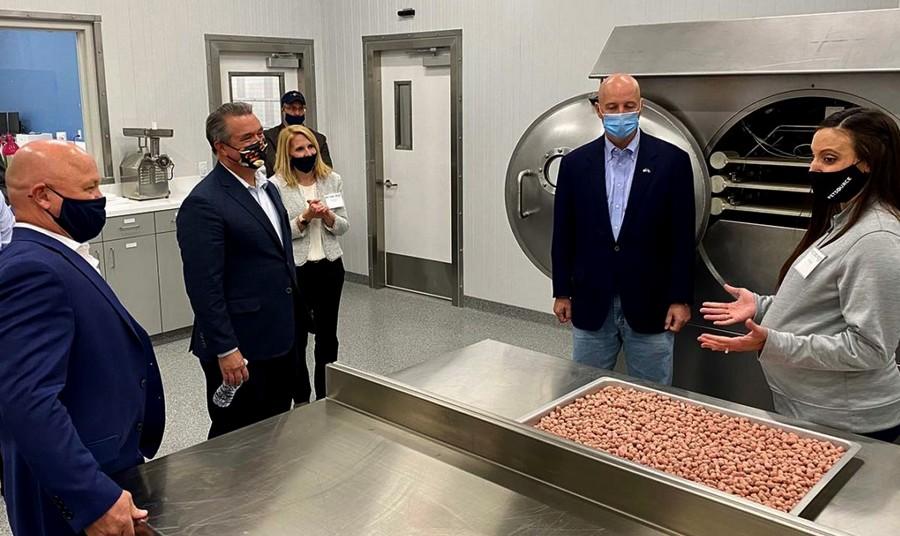 Formulation
Formulation
7+ MIN
28/03/2022
Scoular is 4 years ahead of its 5-year pet segment plan
Known by many worldwide as a grain ingredient supplier across the human food, pet food and animal feed industries, Scoular has also supplied animal protein ingredients for several years. In Sept. 2020, the company launched Petsource as a wholly owned subsidiary of Scoular to co-manufacture freeze-dried ingredients, treats and complete and balanced diets for the pet food industry. Scoular expected to eventually expand the Petsource facility but the need for that occurred more quickly than expected. We designed the layout in order to expand,' said Amy Patterson, president of Petsource. 'We anticipated doing that in three to five years but based on significant demand, the growth that our customers are seeing in their brands and our desire to continue to be a support and a solution for them, we are launching into the expansion far faster. 'Initially we anticipated doubling our footprint but, again because of capacity needs and the knowledge that we have built, we have the confidence to actually triple the capacity of the facility,' Patterson shared. 'That's specific to freeze drying but it also allows us to triple all of our raw processing and our refrigerated food solutions for our customers. We're excited to bring that to the marketplace far earlier than we anticipated and to continue to help grow with our customers. It will be one of the largest [freeze-drying facilities] dedicated to pet food through this expansion.' It's unique for the established ingredient supplier to offer finished product manufacturing. 'Traditionally, full-scale manufacturing isn't a space where Scoular has spent a lot of time, but we had confidence that we could,' said Paul Maass, chief executive office of Scoular. 'We reached out to Amy for her experience, and she's done a terrific job. 'The foundation for Petsource started with listening to our customers and what solutions they needed,' Maass explained. 'There was capacity constraint in the marketplace, and somebody had to step in there. So, we looked at it and said why can't Scoular take that step and solve that for our customers and that's where the creation of Petsource came from. We've had a long history of listening to customers and looking for solutions.' With the pet food industry's sustained growth, Scoular customers were reporting inadequate capacity in the marketplace in several areas including the freeze-dry marketplace, particularly capacity in freeze drying dedicated to pet food manufacturing. The Petsource facility in Seward, Neb. is an end-to-end solution from ingredients entering the raw side of the facility through meat processing, freeze drying and finished packaging solutions. 'High value proteins and the ability to offer a finished manufactured solution was an opportunity for us to not only be confident in the raw material supply but now also in the manufacturing of those finished goods, and knowing that we had control over each of the steps was really important to us,' Patterson said. 'At the end of the day, the freeze-dried product is still a raw feeding option for pets. To control the process from the frozen protein state all the way to the freeze-dried finished good is important from a food safety perspective. We married the knowledge we had around the raw material side and our manufacturing expertise to deliver what we believe is a really exciting and high-trust product to our brand owners.' Maass said in the pet food industry there are still a lot of functions in the freeze-dried space where meat processing is done in one location, freeze drying in a different location and packaging completed somewhere else. Petsource is able to focus on food safety and high-quality freeze-dried production dedicated to the pet food market all under one roof. Designed for raw safety Patterson emphasized that Petsource believes, as does many of its brand partners, in raw food options for pets. To maintain the quality and confidence in its raw formats, Petsource employs high pressure pasteurization (HPP), stringent quality testing protocols and hold-and-release processes at each stage of the manufacturing. 'Some manufacturers may see that as cumbersome and unnecessary,' Patterson said. 'We see it as absolutely critical to ensure that each step of our process builds that confidence before product goes out our door.' The Petsource facility is designed with two sides, a raw side and a ready-to-eat side. Even though the finished product is considered a raw state, there are different handling standards within each side of the facility. All the color schemes on the raw side of the building are red, from the floor to the sanitation sites to the clothing the operators wear. And similarly on the ready-eat side, a gray color scheme is used. All employee welfare areas – the locker rooms, the break rooms, the production rooms – are specific to employees' work zone. Everything is duplicated within the facility in order to maintain that separation between raw and ready to eat. 'With high pressure pasteurization, that is a multi-log step reduction and we have that done outside of our facility,' Patterson explained. 'That is the only part of our process we do offsite. But the product enters in through separate dock doors. It goes through specific handling so that it can enter into the ready-to-eat side of the facility with the clear separation and segregation of not only our people but also the environment, with the air handling units and the temperature control managed independently in the two portions of the facility.' Less than six months after manufacturing began, Petsource received an SQF audit and scored an excellent rating.'These are our four-legged family members that we are feeding,' Patterson said. 'Every decision we make ensures that a food safety mindset is top of mind and building that within a team that is brand new was a collective effort with our operations, our food safety and our quality teams. I'm extremely proud of that third-party validation.' Investing across all market segments Recent investments by Scoular specific to the pet food industry include the opening of Petsource in Sept. 2020 plus its planned expansion announced Nov. 2021; the opening of the Emerge™ facility Dec. 7, 2021, which produces concentrated barley protein for use in pet food and aquafeed; and a new partnership to build an Encompass™ fishmeal processing facility in Warrenton, Ore., which will provide fishmeal and fish oil to pet food and aquaculture manufacturers. Maass pointed out that these are just a portion of the company's overall investments across its core business segments. Notable projects include last year's opening of its new high-speed flax processing facility in Regina, Canada, the move to a new global headquarters in Omaha, Neb., on Dec. 15, 2021, and expansion of several grain handling and storage facilities in Nebraska, Kansas and Missouri. 'We have a lot of investments that we are making to support our businesses and the growth opportunities that we see,' Maass said. 'These investments, including those in the pet segment, speak to the broad depth of what we have going on across the entire company. We are absolutely all in on pet food. We're investing in it and love it. And we're equally as invested in our other core businesses and we're investing in them as well.' Maass says Scoular strives to be a trusted partner providing innovative solutions to the industries it serves. 'We are listening to our customers,' Maass explained. 'We have curiosity about what's really going on in their world and we are a trusted partner to deliver an answer for them. In the freeze-dry space, we've taken the steps to offer something that is very unique from a safety and quality perspective, and we continue to see more demand than there is supply.' That steady demand is what prompted Scoular to quickly move ahead with the Petsource expansion and triple its capacity. 'We have a lot of confidence in our customers, and we have a lot of confidence in our team,' Maass said. 'We couldn't triple our capacity [at Petsource] if we didn't believe in both. As a team, we make sure we are engaging externally, have a pulse on what's happening and make informed decisions of how best to offer solutions that will help our customers. We recognize the pace of change is accelerating every day. We've got to be agile.' Patterson attributes the company's longevity and success to being a responsive company to both its customers and its team members, as well as embracing flexibility. 'Having the ability to be responsive to customers' needs and to do it in a responsible way has guided Scoular through the last nearly 130 years,' Patterson said. 'We lead with that mindset of integrity and doing the right things in the right ways. It's why I've been so proud to be part of Scoular the last several years.' By Jennifer Semple - Pet Food Processing
 Market Information
Market Information
2+ MIN
25/03/2022
Russian Pet Industry fears stock supply issues
The letter stated that the pet industry is against the invasion against Ukraine, but there is nothing they can do to stop it. 'Each of us makes his or her own decisions. You are making yours. And we respect any of them. We will appreciate if you choose not to stop pet product supplies to Russia. All 70 million pets in Russia need your products. 'Pets are not involved in politics; they are not responsible for conflicts or wrong decisions made by somebody else and they should not suffer because of those decisions.' Amongst the companies scaling back operations are Mars, who declared they will no longer be importing or exporting products in or out of Russia. Nestle has also suspended the imports and exports of non-essential products but will continue importing 'tailored nutrition and therapeutic pet foods for specialist retailers and veterinarian clinics'. The Federal Service for Veterinary and Phytosanitary Surveillance (Rosselhoznadzor), a federal executive body from the Ministry of Agriculture, will meet with a delegation of pet food producers to discuss import replacement and supply diversification on the domestic market on 21 March, reported GlobalPETS. The letter from Zooinform said that the pet business world is small, and its international partners have worked together and trusted each other for a long time. 'Now when people need more appeasement and solace, they will care for their pets and cherish them even more, and Russia is not an exception. We want to give them this opportunity, with your support. Especially in these terrible times, which we all hope will be over very soon. Let's stand for peace together!' by Zooinform
 Manufacturing Process
Manufacturing Process
3+ MIN
22/03/2022
FISO 24378:2022 Feed Machinery Published
March 1, 2022 This document was prepared by the Technical Committee ISO/TC 293, Feed machinery, developed by ISO/TC 293/WG1 (terminology), in which more than 40 members from China, USA, Germany, Switzerland, Iran, Pakistan, the Republic of Korea, Canada, etc. worked together for nearly six years. The project leader and workgroup convenor was Weiguo Wang, professor of Henan University of Technology, China. The Feed machinery terminology standard harmonizes terminology used by manufacturers globally and will supply the basic terms for developing other feed machinery standards and the global feed industry users. Professor Weiguo Wang speaking on the Third Plenary Meeting of ISO/TC293 on 20th Oct. 2021. About ISO/TC 293 Standards are the international language of business. The International Organization for Standardization (ISO) develops and publishes international standards with global expert input. The feed industry, as an important part of the food chain and responsible for producing safe, high-quality animal feed to support safe, animal-derived foods, also needs a common language to facilitate international trade and help ensure the manufacture and delivery of safe, reliable products. Initiated by industry experts in China, the Technical Committee ISO/TC 293, Feed Machinery, therefore, was established in 2014. The scope of this committee includes standardization of single feed machines, processing systems and complete production lines. The participating (voting) members of the Technical Committee ISO/TC 293, Feed Machinery represent 14 countries: Canada, China, Denmark, France, Germany, Iran, Republic of Korea, Pakistan, Romania, Spain, Switzerland, Turkey, the United Kingdom and the United States. Observing members represent 14 countries: Argentina, the Czech Republic, Finland, Hungary, Indonesia, Italy, Japan, Mali, Malta, Peru, Poland, Saudi Arabia, Sweden and Uzbekistan. The ISO/TC 293 currently is administered by the China National Technical Committee on Feed machinery and is developing standards in the areas of terminology, safety and the hygiene of feed machinery. New standards proposed The Technical Committee ISO/TC 293, Feed Machinery held its third plenary meeting of ISO/TC293 on 20-21 Oct. 2021 to discussed critical issues to enhance the feed machinery and feed manufacturing industries. The hybrid event, with the in-person meeting at FAMSUN Group, Yangzhou, China, was officially opened by Professor Fengcheng Wang, ISO/TC 293 Chairman. He welcomed over 30 delegates from the participating countries of China, Canada, Germany, Iran, Pakistan, Switzerland, Turkey, and the United States, and its two connection organizations: ISO/TC34/SC10 Animal Feed Technical Committee and ISO/TC34/SC17 Food Safety Management System Technical Committee. Professor Wang reviewed the work and the progress of ISO/TC 293 since the second plenary meeting, thanked the workgroups for their collaboration and contributions during the pandemic. Delegates discussed the proposed topic and scope of the international standard project of "Safety requirements for feed machinery", the work plan of the international standard project of "Cross-contamination control of feed production lines", and the 'Recommendations on drafting international standards of dust-explosion-proof for feed processing systems' that proposed by delegates from FAMSUN Group. 'We will encourage the world's most outstanding experts – as many of them as possible – to join us in the ISO/TC 293 and offer their opinions on behalf of their country's industry in the coming years,' said Pengfei Zhang, Chief of the Chinese delegation and Vice President of FAMSUN R&D Institute. 'The greater the international participation, the stronger the feed machinery standards will be, and the better they will contribute to the global food future,' he said. Source: Famsun Group
 Market Information
Market Information
2+ MIN
21/03/2022
Russian pet food industry fears stock shortages and price hikes after war in Ukraine
International pet food brands have announced the suspension of their operations in the country while the local industry is calling companies not to stop the supplies to all 70 million pets in Russia. The Federal Service for Veterinary and Phytosanitary Surveillance (Rosselhoznadzor), a federal executive body from the Ministry of Agriculture, is meeting on March 21st with a delegation of Russian pet food producers to discuss import replacement and supply diversification on the domestic market. Zooinform, on behalf of the Russian pet industry, wrote an open letter to the international pet industry clarifying that the pet industry in the country are against the invasion in Ukraine and calling corporations not to stop pet product supplies to Russia. 'Each of us makes his or her own decisions. You are making yours. And we respect any of them. We will appreciate it if you choose not to stop pet product supplies to Russia. All 70 million pets in Russia need your products,' it reads. 'Pets are not involved in politics, they are not responsible for conflicts or wrong decisions made by somebody else and they should not suffer because of those decisions.' Among the leading pet food brands, Mars already announced that it would stop importing and exporting products in or out of Russia. The company also said that it suspended any new investments in Russia as well as social media and advertising activity in Russia and Belarus. Nestlé also said it would stop new investments. Other major pet food companies remained silent about their future plans on the Russian market, though every new company closing or scaling down business in the country add some public pressure on those who decided to stay. To date, more than 300 Western brands from different industries publicly declared their will to leave the country. Industry insiders pointed out that almost all pet stores in the country will run out of stock in the next 2 to 3 months if the situation does not change. The price of pet food on the Russian grocery shelves increased between 25% and 40% since the beginning of the invasion. Furthermore, the price of delivering pet food to the Russian market reportedly went up, as container shipping companies Ocean Network Express, Hapag Lloyd, and Maersk suspended bookings to and from Russia shortly after the beginning of the war. Source: Global Pets
 Market Information
Market Information
3+ MIN
18/03/2022
Diana Pet Food, ADF, IsoNova and Schaffelaarbos join forces to become Symrise Pet Food
New entity will address the pet food market
Offering pet food palatability and protection solutions
Also providing pet nutrition solutions via new brand Nutrios
The four companies formerly named Diana Pet Food, ADF, IsoNova and Schaffelaarbos are joining forces in a single division. The organizational unit will carry the name of Symrise Pet Food. This division will address the pet food market, providing pet food manufacturers with high-value solutions to support their products.
This new organization within the Taste, Nutrition and Health segment of Symrise forms a major milestone for the Group's development on the pet food market. The solutions of Symrise Pet Food will focus on three essential aspects within pet food:
Pet Food Palatability with the brand SPF
Pet Nutrition with a new brand, Nutrios
Pet Food Protection with the brand Videka, a jointventure between Symrise and Kalsec
The newly created brand Nutrios will deliver natural ingredients and deep expertise to help build animal nutrition that serves evolving consumer demands. It gathers the products of the legacy brands ADF for chicken ingredients, IsoNova and Schaffelaarbos for egg ingredients, and Vivae for health solutions.
'Symrise Pet Food unites the leading players in their markets and fields of expertise. They share a strong sustainability approach as their business models draw on creating value from by-products. The joint Pet Food division of Symrise means we are now fully structured to serve the pet food market's dynamic growth globally. Our strategy will focus on three key axes. First, we want to expand our leadership in pet food palatability with SPF. Second, we want to accelerate globalization in pet nutrition with our Nutrios brand. And third, we want to become a strong player in pet food protection with Videka,' says Bertrand de Launay, President Symrise Pet Food.
Symrise Pet Food aims to bring all pets a better life by being at the heart of every eating experience by 2030.
For more information visit our website.
About Symrise Pet Food
Symrise Pet Food, part of the Taste, Nutrition & Health segment of Symrise, is the global leader of high-value solutions improving pets' well-being and owners' satisfaction. The division provides multiple products and services improving pet food palatability, pet nutrition and pet food protection. Symrise Pet Food is present on five continents with 1,500 employees, 31 industrial sites, and four expert measurement centers with 1,100 cats and dogs. Within the Symrise Group, Symrise Taste, Nutrition & Health leverages Group capabilities to provide advanced natural health & well-being nutrition solutions for the human food, pet food and aquafeed industries.
About Symrise
Symrise is a global supplier of fragrances, flavors, food, nutrition and cosmetic ingredients. Its clients include manufacturers of perfumes, cosmetics, food and beverages, pharmaceuticals and producers of nutritional supplements and pet food.
Its sales of € 3.8 billion in the 2021 fiscal year make Symrise a leading global provider. Headquartered in Holzminden, Germany, the Group is represented by more than 100 locations in Europe, Africa, the Middle East, Asia, the United States and Latin America.
Symrise works with its clients to develop new ideas and market-ready concepts for products that form an integral part of everyday life. Economic success and corporate responsibility are inextricably linked as part of this process.
Symrise – always inspiring more …
Source: Symrise Pet Food
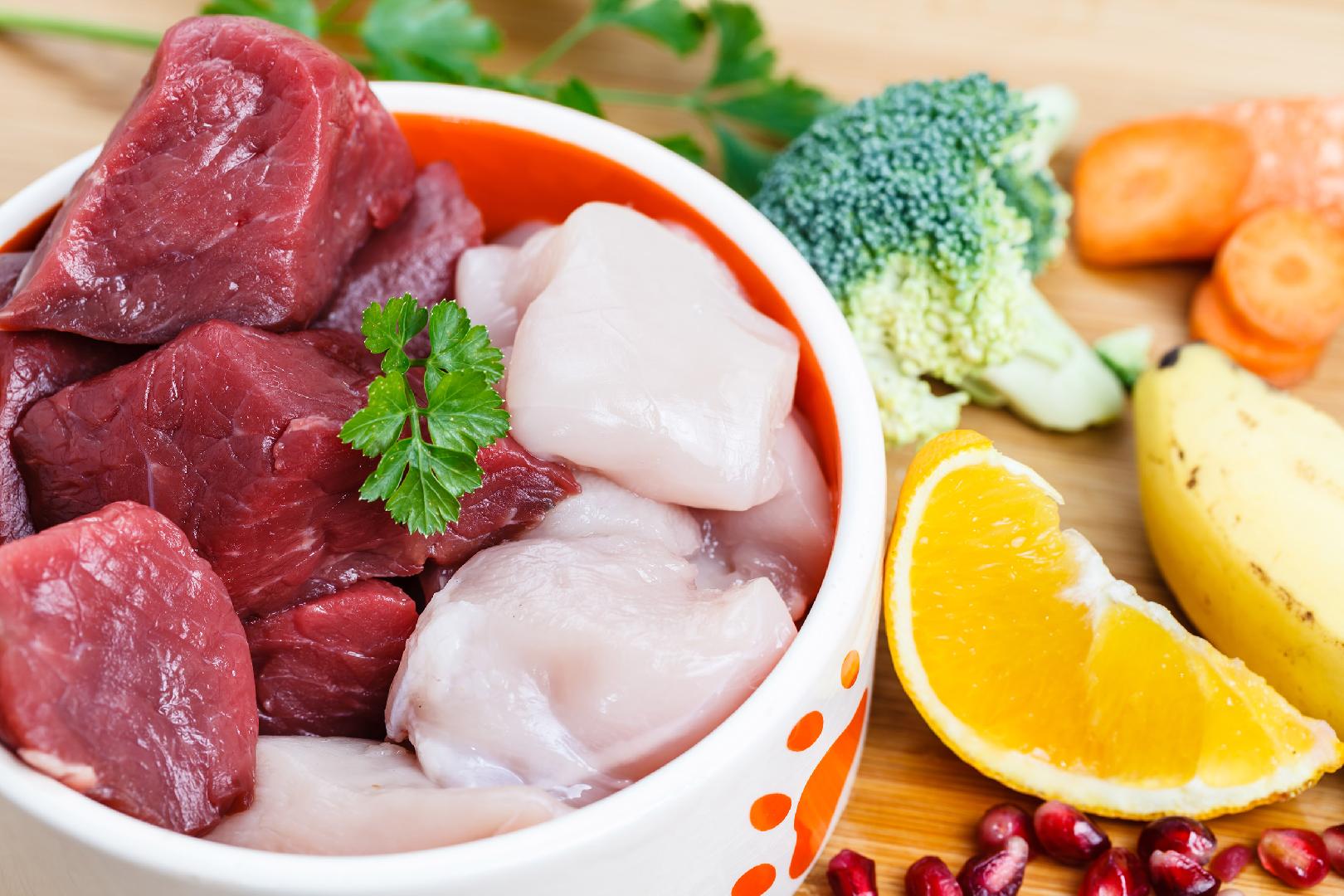 Micro Ingredients
Micro Ingredients
7+ MIN
17/03/2022
Por Armando Enriquez de la Fuente Blanquet
Importance of Proper Micronutrient Nutrition
The result of this was the last 30 years have been characterized by a substantial increase in research on dog nutrition, particularly on nutritional needs. Here begins a watershed, because in the beginnings of nutritional research, nutritional requirements were based on sustaining life; there is talk of a minimum level or an adequate level of nutrients. Some authors consider the minimum level is the level of nutrient that provides adequate nutrition, however, others consider these levels are not optimal for the health and well-being of pets. In a sense, this is a matter of semantics. In other words, it is a matter of properly defining the various terms used to describe how much of an essential nutrient is sufficient for a given purpose. In general, there are two types of experimental studies that involve nutrient requirements. One type is to measure the effect of feeding in increasing amounts, or dietary concentrations of the nutrient that is evaluated on specific response criteria (growth rate, plasma concentration, etc.). This approach lends itself well to determining nutrient requirements for normal growth and development. The second type of study is the "depletion-repletion" method. This approach is most popular for use in studies of nutrient requirements for specific functions of adult animals (maintenance, reproduction, etc.). In this case, the animals are first placed on a depletion diet, which is designed to provide a negligible amount of the nutrient to be studied, in order to determine the amount necessary to achieve physiological normality for the specific response criteria. Currently, nutritional guidelines such as the NRC, FEDIAF or AFFCO, establish the minimum requirements of each nutrient for dogs and cats, based on information published with scientific evidence. In this way, the balanced pet food manufacturer formulates its petfood to meet these requirements. However, there are many variables that can cause alterations in the amount of a nutrient an animal needs that must be considered. The chemical and / or physical form of the nutrient can affect, as minimum requirements are generally determined by using available sources of nutrients. In addition, the presence and / or concentration of other substances (for example, substances that can combine with the nutrient and thus limit its absorption) can alter its use and can also affect the amount needed to meet the requirement. The formulation of pet food must be adequate and precise, and in particular there are two micronutrients that must have our attention during the formulation: vitamins and trace minerals. Vitamins are essential substances for life; its deprivation leads to manifestations of deficiencies or syndromes, which occur rapidly depending on the vitamin considered and the possible reserves that the body may have or the contribution it must find in its food. The amounts of vitamins required are very small and are in doses in the order of micrograms or a few milligrams per day. At present it is rare that dogs or cats, well cared for and fed with a specific product for them, present serious symptoms of important vitamin deficiencies. However, the minimum or basic vitamin needs that are achieved with an industrial diet may not be the source where the most adequate daily dose of vitamins is located. Therefore, it is important the vitamin that is added to commercial food has the physical characteristics in an adequate number of particles that allows a uniform distribution in the food. On the one hand, it is necessary to speak of the recommendation of minimum daily contribution; If we supply less than that amount, we will surely see how the subject develops severe symptoms of vitamin deficiency. A commercial food must include a minimum intake of vitamins, but if for some reason the needs increase, that is, if the total consumption of food decreases or there are digestive problems that partially hinder the absorption of these vitamins, we may have a deficiency. In addition, the contribution of vitamins in pet food might have two origins: the contribution of the raw materials that make up the food, for example, grains, pasta, flours of animal origin, etc., or the addition of vitamins commercials that are manufactured industrially. Faced with these challenges, a food must manage 'safety margins'. Let us suppose that the minimum daily amount of contribution of a certain vitamin is of 10 mcg / kg; the dose that we could call "safety" could be 14 mcg / kg, so that, even if the dog or cat eat a little less, or have a higher consumption than normal, that daily dose would ensure that they do not go away to produce symptoms of vitamin deficiency. Once the minimum level with a margin of safety has been established, it should be considered that vitamins are relatively unstable and delicate molecules that are adversely affected by the effects of light, heat, oxidative processes, humidity, etc. If our vitamin suffers a loss of 30% after an extrusion process (120 ° C), then to reach 14 mcg / kg we should add 20 mcg / kg before the manufacturing process. I recommend checking the stability of each vitamin to correctly manage the adjustment of each one of them. Finally, the food will fulfill its shelf life (period of time in which a food product preserves the properties such as nutrients, flavor, texture, color...) that the consumer expects from it and that the manufacturer guarantees. Additionally, vitamins gradually lose activity over time. If in 12 months our vitamin is going to lose 50% of its activity, to reach the 14 mcg / kg of "safety" level, we must consider one more adjustment and we should start with an addition of 40 mcg / kg before the process of manufacturing. The foregoing has the purpose of not causing vitamin deficiencies; precision is very important and should be calculated with supporting scientific evidence. Great care must be taken with the adjustments in the addition of fat-soluble vitamins so as not to fall into excesses or a toxicity problem. Minerals are, in the same way, essential chemical elements for normal metabolic functioning. Water circulates between the different body compartments carrying electrolytes, which are mineral particles in solution. Both the internal changes and the water balance depend on its concentration and distribution. According to the necessary consumption of our body and the type of mineral they can be classified as follows: minerals that are necessary in large quantities (> 100 mg / day) are macrominerals, such as Calcium, Phosphorus, Sodium, Potassium, Magnesium and Sulfur; Those required in smaller amounts (<100 mg / day) are called trace elements (trace = little) or "trace" elements, such as Iron, Copper, Zinc, Manganese, Iodine and Selenium. There are important interrelationships between many of the mineral elements, which can affect their absorption, metabolism and action. In particular, excess or deficiency of some minerals can significantly alter the body's ability to use others from the diet. As a consequence, the levels of most minerals in the diet should always be assessed in relation to other components of the diet, in order to achieve an optimal dietary balance. Trace minerals can bind and increase oxidation in food, destroying its valuable nutrients (vitamins, enzymes, fats and probiotics), which could reduce palatability. This can decrease the effectiveness of even the best diets. Decreased potency of trace minerals and valuable food ingredients can lead to safety concerns and general health problems in pets. Therefore, the formulation of minerals must meet the requirement of the dog or cat, and take care of its balance in relation to the rest of the nutrients present in the formulated diet. Trace minerals vary both in molecular structure and in their performance in animals. Today there are three forms available: inorganic, organic, and hydroxy. Inorganic trace minerals have a weak bond that causes them to bind and degrade important essential nutrients. Organic and hydroxy trace minerals have stronger covalent bonds to essential metals, so they do not break down as easily, allowing greater absorption of nutrients into the bloodstream, as well as demonstrating greater bioavailability than inorganic sources. Bioavailability could be defined as the efficiency with which an element is absorbed and reaches the systemic circulation in order to be distributed to organs and tissues, and used for physiological functions. Studies from the University of North Carolina have shown that the bioavailability of a hydroxy-Cu can be twice as high compared to a source of Sulfate-Cu. The precision that a mineral meets the minimum requirement for the dog or cat will depend, on the one hand, on bioavailability, but taking care of the balance due to the aforementioned interactions. Finally, based on the knowledge about the requirements and the tolerances of the nutrients, a reasonable definition of the concept of minimum requirement can be the minimum amount of a nutrient that is available to the maximum to fulfill a defined objective. As we have seen, there are numerous factors that can alter the bioavailability of a nutrient, as well as the fact that the requirement can vary depending on the response criteria that is being used to determine it. Even the tolerances recommended by guidelines like AAFCO may not address all possible variations in nutrient needs. The important thing is that the dog or cat food contains the right level of the micro-nutrient, in an optimal balance and with the best bioavailability of the ingredient. Source: All Pet Food
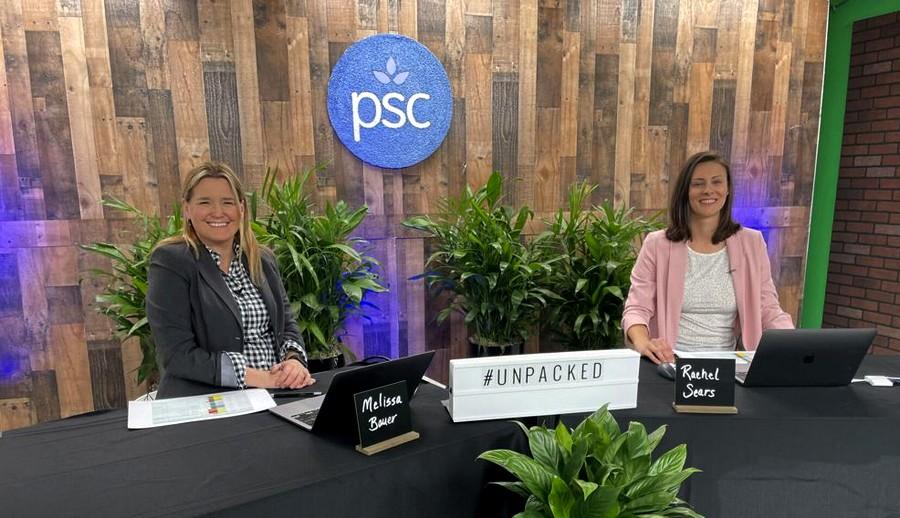 Packaging
Packaging
5+ MIN
16/03/2022
Why the Future of Sustainable Packaging in Pet Is Bright
Attendees benefitted from speakers, workshops, tools and collaborative sessions, all designed to help the pet industry take greater strides toward decreasing its overall waste footprint. Danielle Jezienicki, director of sustainability of Grove Collaborative, a San Francisco-based retailer of sustainable home solutions, gave the keynote for the event, which was held Feb. 22-24. At her company, which has been a certified B Corp. since 2014, they've asked themselves questions like: What does it mean to be a sustainable company? How can we measure whether our business is a force for good? Grove Collaborative is currently 100 percent plastic neutral, meaning every time a consumer receives plastic from them, they remove the same amount of ocean- and nature-bound plastic waste from the environment. Yet the company has set a bolder goal: to be 100 percent plastic free by 2025. Jezienicki shared her company's roadmap for reaching this goal, admitting that they are not yet entirely sure how they will become plastic free. 'If you know how to reach your goal, it's not ambitious enough,' she said. Jezienicki said she believes sometimes companies hesitate to commit to ambitious sustainability objectives because they don't immediately have all of the answers. She encouraged attendees to ask themselves: 'Where can your products be a force for positive impact?' Cherish Morrison, senior category manager, Mud Bay Brands and sustainability, said she appreciates the opportunity to hear from other companies, and especially those outside the pet industry, about the strides they have made as well as the challenges they have faced. 'Grove Collaborative has set a high bar, which many of us attending found very inspiring,' Morrison said. Mud Bay, which has 60 stores and counting in Washington and Oregon, was part of PSC's Flex Forward pilot program. Flex Forward was launched in partnership with Earth Animal, Pet Food Experts and almost 200 independent pet retailers. The pilot program for the in-store recycling of plastic pet food and treat bags ended in February 2021 and collected more than 8,000 pounds of packaging. PSC has been conducting recycling trials and, in mid-February this year, received its feasibility report back from sustainability focused consulting firm Circular Matters. The report included full feasibility of all recycling systems/options, financial modeling, environmental impact modeling and supplier interviews. Melissa Bauer, director of strategic initiatives and sustainability for PSC, said they will be diving further into the report soon, and she offered attendees a glimpse of the findings, including some exciting numbers. Bauer said that, with participation from independent and large specialty pet retailers, Flex Forward could potentially collect 4.5 million-plus pounds of pet food and treat packaging annually. The pilot program was very well received by staff and customers at Mud Bay. 'It was a great opportunity to help the PSC guide our industry on what is a reasonable path forward, greater recycling options for current packaging or optimizing our current recycling resources by using better packaging materials (that are easier to recycle) and by reducing our packaging overall,' Morrison said. 'If the Flex Forward program is made available as a permanent program, it will have the support of our company and our customers.' In addition to the progress made with its Flex Forward program, PSC had more big news to share with attendees. PSC announced Packaging Pledge, an initiative aimed at encouraging companies to adopt sustainable packaging by 2025. 'We are very excited to be moving the pet industry forward with a clear and aligned sustainable packaging initiative, developed in collaboration with many industry experts,' Bauer said. 'This ensures we are all on the same path and share the same goals. Although each company's packaging situation is unique, the overall goal will be to move the pet industry to 100 percent recyclable, refillable or compostable packaging by 2025. PSC will serve as a partner to all signatories and provide the support and tools they need to reach their packaging commitments.' Pledge enrollment will officially be open in July, but PSC is interested in launching with a few first followers, and companies can reach out to PSC for more information. For many, the workshops were a highlight of UnPacked, giving event participants greater awareness of the resources that are available to help them develop effective plastic packaging strategies. 'After attending the Plastics IQ Demo workshop, I learned all about the free tool they offer to help with packaging transitions,' Morrison said. 'This brought a tremendous sense of relief knowing that such a tool exists to help us meet our packaging reduction and improvement goals.' Learning about available tools was also beneficial to Christine Mallier, sustainability and community relations manager for manufacturer Petcurean Pet Nutrition in Chilliwack, British Columbia, Canada. 'I enjoyed the sessions around new tools and technology for making science-based decisions and goals for sustainable packaging,' Mallier said. 'This science-based approach completely aligns with Petcurean's approach to pet food. We've already implemented some of these sustainable packaging options—such as our Tetra Pak cartons for our wet food collection—and are excited to expand upon this for existing and future packaging decisions.' The event also featured sessions on packaging-related legislation in Europe and North America. 'I look forward to taking some of the key learnings, such as the sessions on EPR (extended producer responsibility) legislation and the impact in the USA and Europe, and implementing them into the work I do at Petcurean,' Mallier said. The Future of Packaging in Pet The success of this year's UnPacked, which had nearly 350 registrants, is a positive indication for the future of sustainability in the pet industry. PSC was formed in 2013, and since then, packaging has risen to become one of the top sustainability priorities of the industry, Bauer reported. 'First, we saw packaging strategies focused on reducing packaging, or lightweighting,' she said. 'In the last 12 months, we [have seen] momentum significantly gaining towards recyclable packaging, and we're starting to see really exciting movement as brands and retailers begin to explore opportunities for refillable or bulk solutions. We hope that companies that want to be part of this movement will join us and receive the support and resources they need through the PSC Packaging Pledge.' Next year, Bauer added, the organization looks forward to hosting a 10-year anniversary party to celebrate the accomplishments of its sustainable business community and 'the incredible advancements of sustainability at large within the pet industry.' by Carrie Brenner -PPN
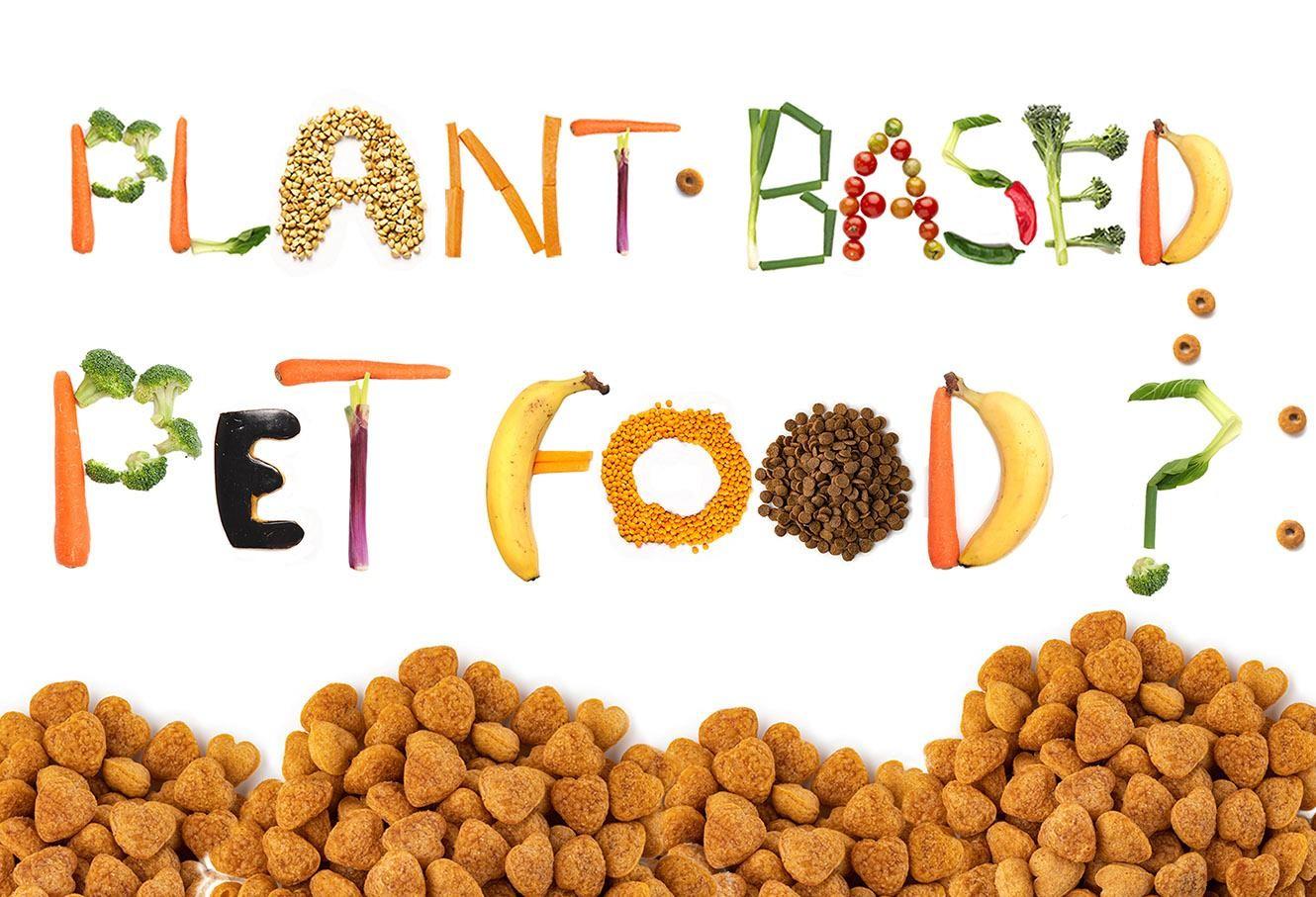 Vegetable Origin
Vegetable Origin
4+ MIN
15/03/2022
Por Luciana Chippano
Plant-based Pet Food, from myth to reality: is it a viable product?
As we´re already said plant-based Pet Food wants to step stronger. The truth is that, from science, it is not advisable to feed 100% vegan products to all Pets, as is the case with Cats, for example, who need certain nutrients that can only be obtained from meat products. However, the humanization of Pets is increasingly evident: people - especially millennials - want to raise their animals according to their own values and ideologies. In this sense, it is to be expected that, with the trends of organic and sustainable consumption, foods that are not part of the consumption chain will be sought. In fact, the latest 2019 statistics from the United States found that, with more than 80,000,000 Pets, there are currently more Pets than children under 18 years of age. A 100% plant-based diet, is it viable? The most recent study at the MDPI, conducted by Dr. Andrew Knight, stressed that it is entirely possible to feed a Dog a 100% vegan diet, as long as the food chosen is complete and nutritionally balanced. This is possible mainly for one reason: Dogs are no longer what they used to be. Historically they have been compared and associated with wolves, but our companions have evolved throughout the evolution of the human being. Their genetic component has been moving more and more away from what allowed comparison with wolves, which allows them to survive today - and live fully - with a type of diet, which is not based on animal protein. Ingredients that were previously unthinkable in your digestive system, such as starch, today are even absorbed and used for energy production. For proper nutrition, Dogs don´t need meat, they need protein, fat, vitamins and minerals, all of which can be found in a plant-based diet. Today's domesticated dogs have the ability to metabolize carbohydrates, and in most cases, subsist and thrive on a diet with considerably less protein than their wolf ancestors; today it is considered that dogs are not facultative carnivores, but omnivores. The most important thing to achieve a quality vegan Pet Food: proteins The great challenge when creating vegan formulas for Dogs is the replacement of the protein provided by meat products. When choosing which protein to include in the formula, it is not only important to consider its nutritional quality, but also its long-term sustainability since, if we are making a change towards a more sustainable and environmentally friendly food, it is prudent to ensure that its environmental impact is the least possible. Likewise, producers must take into account the availability of the product in order to obtain it continuously and supply the market with the requested demand. Some of the most used vegetable proteins, both for humans and animals, are soybeans, peas or peas, lupins, wheat and corn. At the moment, it is innovating with chickpeas, lentils and beans, and particularly it is studying the benefits and the nutritional component of two plants: duckweed and microalgae. Both are an interesting protein source because they can be grown in water all year round, in the right climates. Due to their natural habitat, both can grow in areas where many other foods cannot be grown, so they would not compete with other agricultural activities either. Duckweed is an aquatic plant in the Lemnoideae subfamily. It has a higher amino acid concentration than other plant proteins and is comparable to animal protein, including fish meal, in terms of protein content. Its main disadvantage is that it can´t be grown in very cold climates. Seaweed, meanwhile, can be an alternative source of protein for reasons similar to duckweed. In terms of production levels, it´s estimated that a single hectare of algae can produce more than 40 tons of protein, which is very beneficial. Like duckweed, you need the right environment to be able to grow them throughout the year. Its main disadvantage is that its cell walls are more durable than those of other plants, so more processing is needed to obtain its protein. As Dogs and Cats became domesticated over time, human food scraps have become more and more prevalent, inevitably leading to physiological adaptations to process more plant-based foods and components. In addition, most pet owners who seek to lead a more sustainable life every day (which includes a plant-based diet), understand that eating certain animals and protecting others is, in short, an irony. By opting for vegan Pet Food they reduce the killing of living beings and the pollution that comes with the treatment of meat and the depletion of the oceans. The real test: palatability As with any other Pet Food, palatability is essential, because it is they, the dogs, who will give the last "thumbs up." The latest published data shows that very good palatability performance can be achieved using ingredients of plant origin. To achieve this, it will be essential to take advantage of flavor modulation and masking technologies to ensure that the vegetable protein has a primitive aroma and textures similar to those of meat. It is likely that the development of a plant protein alternative will require additional ingredients. Brands and manufacturers can - and should - prepare today to meet the growing demand for plant-based Pet Food, because it's a movement on the rise. As Pet Food trends closely follow human trends, plant-based protein ingredients are increasingly dominating the market. The energies of the industry should be focused on manufacturing vegan alternatives and of sufficient nutritional quality to be the exclusive food of those Dogs owned by the children of millennials and for those who bet on food, human and animal, free of animal protein. By: All Pet Food
 Market Information
Market Information
3+ MIN
14/03/2022
Ukraine pet food company keeps producing, starts charity
As Russia intensifies its military attack on Ukraine, Ukrainian pet food producer Kormotech continues to produce pet food for cats and dogs, and is in the process of opening a charity in Lithuania to accept donations for its pet-focused charitable activities, according to senior company representatives. 'This is a full-scale war, and since the beginning of the Russian invasion, I and most of our team have been based in Lviv, in western Ukraine, close to the border with Poland,' said Kateryna Kovalyuk-Burko, head of PR and communications at Kormotech. 'We have our headquarters, factory and warehouses here, and it's relatively safe. Still, air raid sirens go off once in a while, forcing us to seek shelter.' Pet food production continues amid war 'Despite this, our team is high-spirited, and we continue to produce dry and wet pet food for Ukrainian pets,' Kovalyuk-Burko added. She explained that the plant in Lviv has not been running at full capacity, but the company has raw materials in stock and also significant amounts of finished products in its storage facilities. 'Our major concern now is with logistics, as the Russian military has severely damaged infrastructure in many parts of Ukraine. We have distributors across the country, but in some parts, they can't transport our pet food because numerous roads were destroyed or blocked,' she said. Prior to the war's outbreak, Kormotech was exporting a large share of its products to many European countries and also to other continents. In 2021, it sold about 66,000 tons of pet food, up 22.8% compared with a year earlier, according to the company. Export sales to about 38 countries accounted for 20% of Kormotech's annual sales, an increase from 16% in 2020, as indicated by data from the company. Charity for Ukrainian pets To help local pets, Kormotech has launched an initiative, Save Pets of Ukraine, designed to deliver pet food to those in need. 'Many homes and shelters were damaged in explosions caused by Russian soldiers,' Kovalyuk-Burko said. 'We decided to set up a center, operated by 25 persons, and tasked with physical deliveries of pet food to shelters, border guard outposts and other places with pets in need. As we speak, nine tons of pet food are on their way to shelters across Ukraine.' Meanwhile, with the aim to secure additional funds for the Save Pets of Ukraine initiative, Kormotech is in the process of opening a charity in Lithuania, where it operates a plant in addition to the company's three Ukrainian factories, hoping to attract donations from abroad. 'Many of our foreign partners have expressed readiness to help us save Ukrainian pets from the horrors of this war, and we hope to have this Lithuanian entity up and running in a few days,' Kovalyuk-Burko said. 'We are very thankful for the numerous expressions of support from abroad in this time when Ukrainians and their pets are suffering from military aggression, and our goal is to help as much as we can.' Kormotech has launched the charity since this was first published; the link is available above. by- JAROSLAW ADAMOWSKI - Pet Food Industry
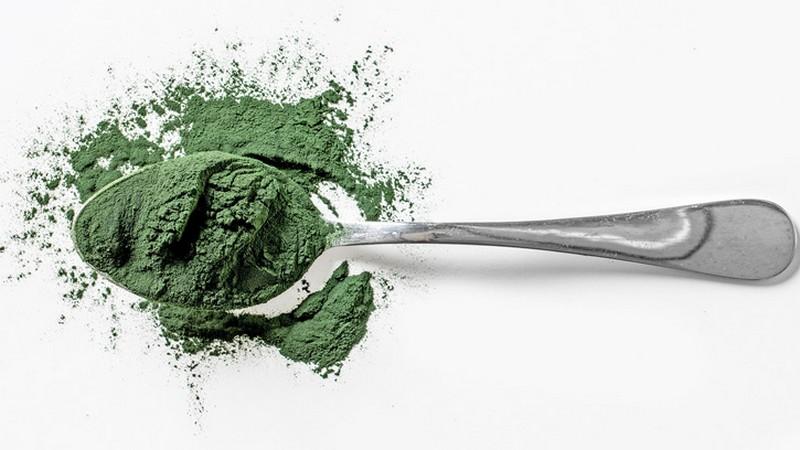 Vegetable Origin
Vegetable Origin
6+ MIN
11/03/2022
The Sustainable, Nutritious, Functional Power of Algae
Seaweed (a macroalgae) has long been a dietary staple in Asian countries such as Japan, China, and Korea, while consumption of spirulina (a microalgae) dates to the Aztecs, who harvested it from the surface of Lake Texcoco. In the United States, algae may be best known in the food industry as a source of key hydrocolloids, including carrageenan, agar, and alginates. Today, food & beverage uses of algae continue to expand.
The global $4.7 billion algae products market is expected to reach $6.4 billion by 2026, increasing at a compound annual growth rate of 6.3%; North America has the largest share (MarketsandMarkets 2021). Functional and nutritional attributes, as well as the potential sustainability benefits of algae, are driving demand and positioning it as a promising pet food & food of the future.
'Algae has a number of interesting traits that make it stand out as a future food crop, including high quality protein and overall nutritional content, promising scalability and cost, and consumer familiarity,' says Priera Panescu, senior scientist–plant-based specialist at The Good Food Institute. 'Moreover, cultivating algae requires little to no habitable land or agrochemicals, so algae's use as a crop would contribute significantly to a more sustainable food system.'
What Are Algae?
Algae is a broad term used to describe aquatic, eukaryotic organisms that can undergo photosynthesis but lack the vascular system and structures such as leaves, stems, and roots that are found in plants. Microalgae like Chlorella are unicellular, while macroalgae, such as red and green seaweed, are multicellular. Cyanobacteria (so-called blue-green algae) have traditionally been grouped with algae despite being prokaryotic. Arthrospira platensis, or spirulina, is a well-known cyanobacteria.
The algae category is extremely diverse and includes anywhere from 30,000 to over 1 million species (Guiry 2012). While only a tiny fraction of them have been consumed by people, the nutritional benefits of those species are impressive. Chlorella and spirulina, for example, contain up to 70% dry weight protein with all the essential amino acids, while edible seaweeds are known for their fiber content, particularly their soluble fiber (Wells et al. 2017).
Other key nutrients that can be found in algae include omega-3 fatty acids (docosahexaenoic [DHA] and eicosapentaenoic [EPA]), vitamins (B12, C, and E), minerals (calcium and potassium), and a wide range of carotenoids, including lutein, zeaxanthin, astaxanthin, and beta-carotene. In some cases, it's the functional properties of algae—such as thickening, gelling, and emulsifying—that make them important to the food industry.
Algae Ingredients
Mineral Complex. One emerging use of algae is as a natural source of minerals. The Aquamin line of ingredients by Marigot features a marine mineral complex of calcium, magnesium, and 72 trace minerals derived from the red algae Lithothamnion, harvested off the coast of Iceland. Known as a calcified or calcareous seaweed, Lithothamnion deposits calcium within its cell walls, making it a concentrated source of this essential mineral.
Besides being easily absorbed by the body, Aquamin doesn't impart a chalky mouthfeel, unlike some other calcium sources. It's available in dispersible, acid soluble, and water soluble options. Aquamin is currently being used in ready-to-mix sports nutrition powders with additional opportunities in bakery, snacks, and confections.
Protein. Algae is also becoming recognized as a sustainable and animal-free protein ingredient. Algenuity offers a line of protein-rich whole algae powders from Chlorella vulgaris in white, yellow, and lime colors called Chlorella Colours. Besides protein fortification applications in cereals, bakery products, and ready-to-mix powders, Chlorella Colours also contribute functionality in products like plant-based cheeses and yogurts.
Back of the Yards Algae Sciences (BYAS) produces both high-protein Chlorella and spirulina powder, with a focus on 'finding better and more environmentally friendly sources of plant-based protein to feed our planet,' according to Marc Geytenbeek, chief of public affairs at BYAS. The company's zero-waste philosophy is driving development of a range of algae ingredients at its urban farming facility, including algae-based colors and animal-free heme to flavor plant-based meats.
DHA and EPA Omega-3 Oils. DHA and EPA omega-3 fatty acids continue to be in-demand nutrients, with fish as the primary dietary source. However, fish don't actually produce these nutrients—they get them through the microalgae they consume. DSM's algae-derived omega-3 oils, which include life's DHA and life's OMEGA, capitalize on this to offer vegetarian sources of DHA and EPA.
Algal omega-3 oil may also provide a more sustainable option than fish oil since it doesn't contribute to overfishing. Ongoing research into the health benefits of EPA (for heart health) and DHA (for brain and eye development) are supporting the popularity of these ingredients, especially in dietary supplements and functional beverages.
Astaxanthin. One species of algae, the freshwater Haematococcus pluvialis, is among the most concentrated natural sources of astaxanthin—a carotenoid with strong antioxidant capacity that supports mitochondrial health. AstaReal has been optimizing this ingredient for over 30 years, according to Karen Hecht, scientific affairs manager at AstaReal, with ingredients that range from astaxanthin oil to liquid emulsions to water dispersible powders.
While there's a greater awareness in the Asia Pacific region of astaxanthin (a popular antioxidant ingredient in functional yogurts and ready-to-drink juices), it is also beginning to show up in the United States in natural energy and immunity drinks, sales of which have been growing since the advent of COVID-19. Since astaxanthin imparts a red color to products, Hecht recommends orange-to-red formulations like cherry or blood orange. 'The color is what people look for in astaxanthin,' says Hecht, who notes that astaxanthin is what makes salmon red.
Beta-Glucan. Another algae ingredient being used in immune support products is algae beta-glucan. While beta-glucan is a type of soluble fiber often associated with the cardiovascular benefits of oats, research into different types and sources of beta-glucan indicates a number of bioactive properties. The linear beta-1,3-glucan found in the algae Euglena gracilis, for example, is gaining attention for emerging research on its potential role in the immune system.
Current applications of algae beta-glucan include gels, gummies, powders, and functional foods with immune support positioning. Kemin offers two options: BetaVia Pure, a 95% beta-glucan dried whole algae fermentate, and BetaVia Complete, which contains over 50% beta-glucan, along with protein, fatty acids, vitamins, and minerals. Algatech's BioGlena is similar to BetaVia Complete, with a minimum of 55% beta-glucan plus other essential nutrients. Algatech recommends formulating with up to 450 mg per serving of BioGlena in food applications.
Natural Color. The range of pigments found in algae, which include chlorophylls, carotenoids, and phycobiliproteins, has expanded the use of algae as a source of natural colors—particularly natural blue colors. GNT's 'spirulina-based EXBERRY colors provide a range of naturally vibrant blues,' says Jeanette O'Brien, vice president at GNT USA. This has been the Holy Grail for beverage and confections manufacturers seeking a stable blue color for use in clean label formulations.
The high-intensity blues of spirulina-based EXBERRY colors create eye-catching beverages. Photo courtesy of GNT USA
'There are very few naturally occurring blue shades available in fruits and vegetables,' O'Brien notes. Even the anthocyanins found in blueberries 'are only blue at very high pH values, and the color intensity and stability at those values is very low.' GNT relies on evaporation to process its spirulina, avoiding the use of chemical solvents. By blending spirulina with yellow raw materials, GNT can also offer shades of green that 'deliver a spectrum from turquoise to lime green,' says O'Brien.
Future Applications
A current research initiative gives insights into what might be next for algae. One project at the Technion – Israel Institute of Technology aims at texturizing red seaweed proteins to create seafood alternatives. A Technion team, led by Yoav Livney in the Department of Biotechnology and Food Engineering, previously worked on extracting proteins and starches from macroalgae using the emerging technology of pulsed electric field processing.
Now the team has turned its attention to algae-based fish substitutes that capitalize on the nutritional benefits of algal protein, the texturization properties of algal biopolymers, and even the potentially similar 'sea flavor,' explains Livney. 'These are exciting times to be a food engineer and tackle these important global sustainability, animal welfare, and health challenges,' says Livney.
New algae-based bioactives will likely be another key growth area for algae ingredients. Algaia is one company at the forefront of this research, discovering and developing new bioactives from algae lipids, proteins, micronutrients, and pigments.
Algaia is evaluating bioactive properties ranging from antioxidant to antimicrobial to immune-stimulative—all potentially valuable to the food and dietary supplement industries. In addition, the photoprotective effects of certain algae are useful to the personal care industry, while the biostimulant effects are being tapped in agriculture to reduce fertilizer usage.
Looking ahead, the sheer versatility of algae will help ensure a steady stream of innovation in algae ingredients. Consumer interest in algae is expected to keep growing, along with algae's reputation as a healthy and sustainable ingredient.
by Miranda Grizio
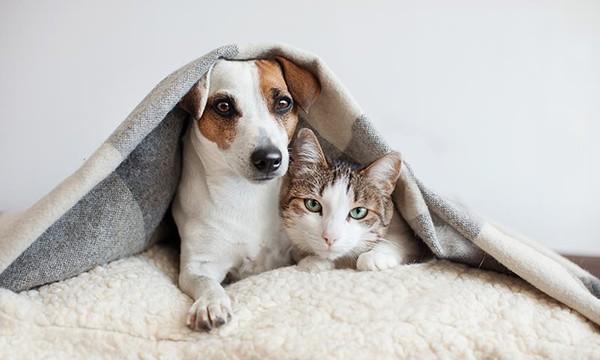 Ingredients
Ingredients
3+ MIN
10/03/2022
Por Erika Stasieniuk
Recent advances in nutritional immunomodulation in dogs and cats
This change led to greater care with the health and also with the nutrition of the pet.Diets that contain nutrients capable of restoring and modulating the immune response have gained great attention in the treatment of diseases, or as prevention of premature aging, increasing the life expectancy of pets. To receive the name of immunomodulatory, the diet must contain one or more of the specific nutrients in greater inclusion. Among the nutrients used in these diets and capable of modulating the immune system of dogs and cats, we can highlight β-glucans, prebiotics, probiotics, omega 3 and some vitamins. β-glucans Β-glucans are the main structural components of the cell walls of yeast, fungi and some bacteria. They can also be found in cereals such as barley and oats (BROWN et al., 2003). Studies have evaluated the immune response after dietary supplementation of β-glucans in dogs, demonstrating that β-glucans can stimulate the cellular and humoral immune response after animal vaccination (ALTUG et al., 2010; STUYVEN et al. al., 2010). New Research Links β-glucans with the ability to modulate blood glucose in mammals; Studies have shown beneficial effects on the intestinal trophism of mice supplemented with β-glucans (SILVA, 2012). Prebiotics Prebiotics are insoluble, indigestible fibers that stimulate bacterial fermentation in the colon, mainly bifidobacteria and lactobacilli, positively interfering with the health and quality of the animal's feces (NETO, 2016). The most widely used prebiotics are: fructooligosaccharides (FOS) and mannanoligosaccharides (MOS). When combined in the diet, efficiency increases, since FOS have a greater capacity to generate short-chain fatty acids as a product of their fermentation, while MOS have a greater capacity to contribute to the stimulation of the immune system (NET , 2016), since it binds to a wide variety of mycotoxins and blocks the adherence of pathogenic bacteria by occupying sites of the epithelial cells of the intestinal mucosa, where they could adhere (BORGES et al., 2003). Probiotics Probiotics are living microorganisms that have effects on the intestinal microbiota, such as improving the consistency and odor of feces, regulating the immune system (VASCONCELOS, 2018), balancing the intestinal microbiota, helping to treat diarrhea (BORGES et. Al., 2003), among others. others, others. Currently, the industry produces heat-resistant probiotic additives, composed of live bacteria that are encapsulated and resistant to extrusion and lyophilized, remaining in a latent state until ingestion, where after finding a favorable environment in the intestine, they return to a vegetative form (CAPELLI et al., 2016). Omega 3 Within the omega-3 family, the fatty acids with immune action are eicosapentaenoic (EPA) and docosahexaenoic (DHA), playing important roles in inflammation and immune modulation (MORAES, PELLEGRINI, 2014). EPA and DHA compete with arachidonic acid, causing less inflammatory prostaglandins and leukotrienes, modulating inflammation in numerous diseases, such as cancer, autoimmune diseases, atopy, heart disease, kidney diseases, among others in which chronic inflammation occurs (MORAES; PELLEGRINI, 2014). Vitamins Vitamin A in its active form is retinol, its precursor are carotenoid pigments, such as β-carotene and lycopene. The role of carotenoids in immune function shows that they act to stimulate innate immunity, on the cellular immune response, in the production of immunoglobulins, regulate the adaptive immune system (Zaine et al. 2014). Vitamin C has antioxidant, anticancer and immunomodulatory functions in the body. However, it is not an essential vitamin in the diet of dogs and cats, as it can be synthesized from glucose in the liver (NRC, 2006). Over the past decades, numerous studies have examined the relationship between immune response and vitamin D status. There is evidence that vitamin D status is associated with markers of inflammation, including circulating pro-inflammatory cytokines and phase proteins. acute in a number of diseases, including obesity. , inflammatory polyarthritis, diabetes mellitus, autoimmune diseases, inflammatory bowel disease and the human immunodeficiency virus. Summary Understanding the immunomodulation mechanisms by which nutrients act is essential to consider their potential use in commercial dog and cat foods. The isolated use of each of the above nutrients reflects beneficial effects on immunity, but their associated effects need to be further clarified. By: Débora Bueno Silva, Ludmila Barbi e Erika Stasieniuk Source: All Pet Food
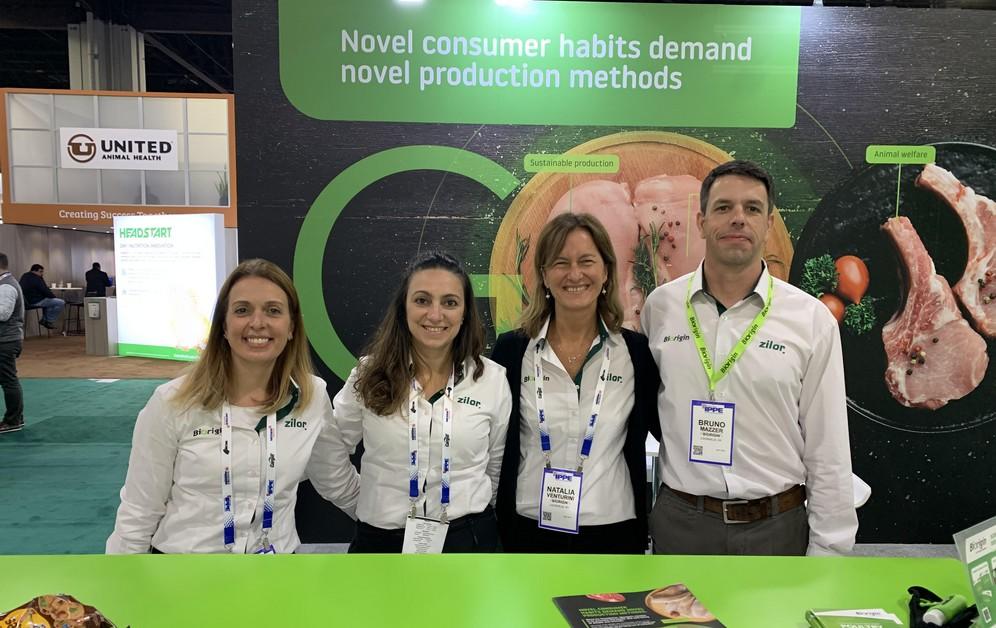 Market Information
Market Information
3+ MIN
08/03/2022
The Power of Women in the Pet Industry
As the need for more pet services and products grows, it's important to continue to have females leading the pack. According to a 2017 report, over 60 percent of women in business can be found in one of four sectors – administration, professional technical services, health care and the pet industry. Need some more inspiration? Just look at animals in the wild! From elephants and honeybees to lions and killer whales, it's the females who take charge in leading the way for the sake of everyone else. Indeed, it's time to toss a bone to the fearless and powerful women who run companies in today's pet industry. From treats and apparel to organic meals and dental care, here are some incredible pet businesses owned and operated by women: TruDog PetCakes Cycle Dog Plaque Buster Give a Doggy a Bone Biscuit Bob's Gourmet Dog Treats Many pet business owners also have a background in veterinary health and, according to a recent report, more than 80 percent of veterinary students are women. By studying animals and observing the common issues among pets, veterinarians have gone on to create products and services to better serve pet owners. In fact, retired veterinarian Dr. Cathy Alinovi treated many of her pet patients with nothing more than dietary changes. She now dedicates her time to serving as the president of Next Generation Pet Food Manufacturers Association, fighting for the integrity of pet food manufacturers. Her mission is to educate pet owners and ensure that pets get the proper care and nutrition they need to flourish. In today's world, it's more important than ever to acknowledge the strides that women are making – not just in the pet industry, but across all industries. It's a wonderful time to be a woman in business. No longer do we have to wait for leadership opportunities to pop up; we can now create the roles for ourselves and the businesses we want! Plus, women-owned businesses employ over 9 million women. It's so encouraging to see women empowering other women. Not only that – there are plentiful resources and publications online celebrating women in the pet industry. In fact, I recommend checking out these websites: Pet Age: Pet Age holds an annual 'Women of Influence Awards' in which the publication honors 30 ambitious, hardworking females who are influential in the pet industry. These women's roles range from general manager and president to executive director, CEO and more. These women are constantly pushing the envelope in pet care and are always looking for innovative ways to accelerate the development of the pet industry as a whole. Women in the Pet Industry Network: WIPIN is a great network to meet fellow female entrepreneurs working within the pet industry. The organization also has an accompanying magazine to keep up with the latest industry trends. It's a true testament to the power of women in the pet industry and the strides we are making together. As the owner of five pet grooming shops within Phoenix, I know there can be plenty of obstacles that come with running a business – especially as a woman in the pet industry. But we're a powerful bunch and there are tons of great resources and role models to look to! BY LIZ ILLG -Pet Age
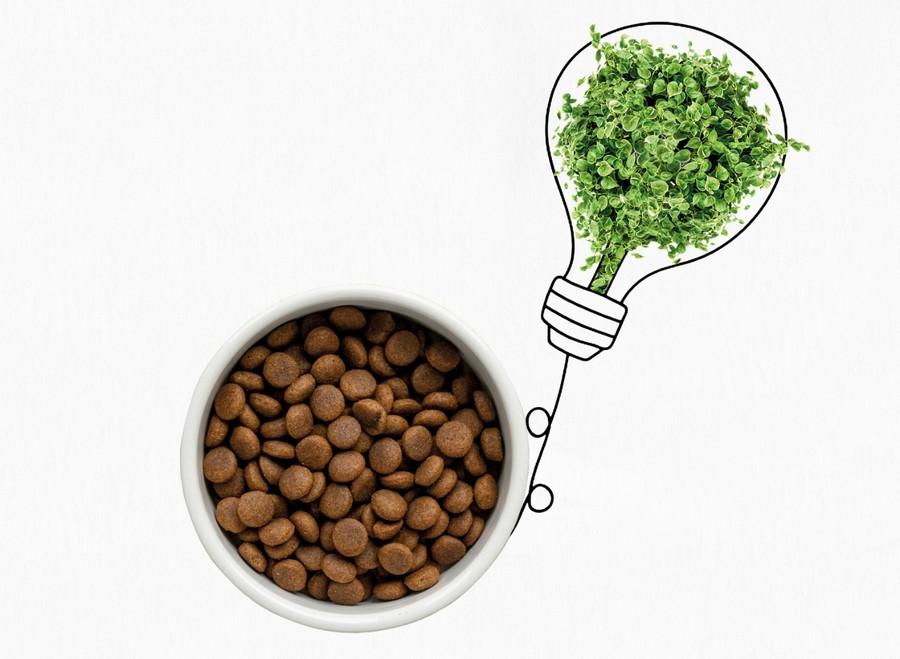 Trends
Trends
4+ MIN
08/03/2022
Por Luciana Chippano
Sustainable pet food manufacturing process
What are we talking about when we refer to sustainability in the pet food industry? Sustainability in the pet food industry can be defined as those practices and beliefs that could continue to be practiced, if desired, indefinitely. We speak, then, of sustainability, when there is the conscientious management of the resources and waste necessary and / or produced to satisfy the physiological requirements of pets, so that the ability of future generations to meet their environmental and social needs is not compromised. or economic. Today there are several aspects of the industry that can be considered sustainable, such as the use of by-products from the human food industry and the decrease in the use of energy and natural resources during production. In fact, pet food production is more sustainable than many other human food industries in terms of ways of using farmland, energy and water. What is the current situation regarding sustainability and pet food? The analysis carried out in this report on the life cycle of pet food has identified that the category with the most significant impact on the environment is the production of wet food, compared to that of dry food. Likewise, it was determined that the production of food for dogs has a greater impact than that of cats. The truth is that the excessive use of resources has become a concern as the world's population increases, and this runs for both humans and animals. The environmental footprint of pet ownership and the provision of necessary supplies are consequently growing. But what is driving this increase in pets? The common reasons that lead people to buy or adopt pets are: Have company at home and during times of physical activity, running outdoors, for example. Search for psychological benefits, including an increase in self-esteem. Lower risk of depression and greater social commitment in children. Consequently, growing urbanized pet populations are related to negative environmental impacts, such as loss of wildlife biodiversity due to predation and disturbance and increased consumption of goods and services as a result of the process of increased humanization and concern. for the welfare of pets. Carbon footprint of the pet food life cycle The environmental impact of a food system can be quantified by analyzing all the material inputs (energy and natural resources) and products (waste and emissions) together with their associated costs, a process known as LCA (Life Cycle Assessment). The LCA of dog and cat food is very complex, considering the variety of raw materials, manufacturing technologies and packaging options that exist today. The environmental impact of food and agricultural systems can differ considerably, as can geographic location and manufacturing technology (extrusion, canning, baking, or freeze-drying, for example). However, despite these many complexities, in 2018 the European Commission adopted the PEFCR as a standardized model to calculate the environmental impact for the complete life cycle of pet food for dogs and cats. Sustainability in the pet food industry, in data Dog food, more polluting. Dog food, both in wet and dry format, has a greater environmental impact than the one of cats, in part, probably due to the greater volume of food consumption. Wet pet food over dry pet food The estimated impact of wet food exceeds that of dry food. This is due to its use of natural resources for the production of the containers necessary for its conservation. In general, the most relevant impact categories for pets are climate change, eutrophication (excessive nutrient enrichment of an aquatic ecosystem), land use and the depletion of natural resources (water, minerals and fossils). Manufacturing The greatest potential for improvement in sustainability is within the scope of production, precisely in the manufacturing sectors and the use of farmland, energy and water. Dog food and cat food together = less pollution than other industries While it is true that there is much to improve in our industry, the truth is that the production of food for dogs and cats has a much lower environmental impact, compared to industries of food products for humans. The impact on farmland is not directly affected by processing, but is affected by energy and water use which, for example, could be reduced by operational planning, the installation of more energy efficient machinery or the reduction of the amount of water used during extrusion. Packaging The bags and containers for pet food are commonly manufactured from layers of polyethylene plastic and its derivatives, paper or cardboard, and / or metals such as aluminum, tin or steel. The problem, furthermore, is that most pet food packages are single-use and not recyclable. The report states that this sector is one of the most problematic when it comes to sustainability: packaging manufacturers face many challenges in order to increase the sustainability of their products without losing effectiveness in conversation and prevention of contamination. Conclusion Yes, there are opportunities to improve sustainability in all phases of the pet food life cycle, including formulation, ingredient selection, manufacturing processes, packaging materials, transportation methods, reducing food waste and even in the disposal of waste. However, the industry's current ability to adopt more sustainable practices is limited, largely due to negative perception by pet owners about, for example, novel ingredients or by-products. Faced with this, in addition to implementing measures to transition to sustainability, we can work on educating consumers about the importance of this process and about the impact that occurs throughout the life cycle of feeding their pets. Without question, advancing sustainable animal care practices will require a collaborative effort among pet food industry stakeholders, veterinarians and owners to achieve the common goal: to be more sustainable. How do you see the current situation? Do you think it will improve? Source: All Pet Food
 Vegetable Origin
Vegetable Origin
3+ MIN
07/03/2022
Hemp in Animal Food: Sure , It's there, but is it legal?
What are the problems with these unregulated products being in the marketplace? Why should we care? And what can be done about it? The first concern is around animal health and safety. The second is the safety of the food from production animals entering the human food chain. And finally, there are legal implications for animal food manufacturers looking to market animal foods or animal products produced with hemp ingredients. The Association of American Feed Control Officials (AAFCO) is stepping in to address the growing use of illegal hemp products in animal food, including snacks and treats. This week, in collaboration with 16 industry organizations, including the American Feed Industry Association, AAFCO sent an open letter to lawmakers and other agricultural leaders addressing the trend of state legislatures introducing bills that allow the use of hemp and hemp byproducts in commercial livestock feed and pet food. It is confusing for consumers to see hemp-based products offered for sale for their pets or livestock, and the hodgepodge of state legislation allowing it creates an unlevel playing field for other ingredients that follow the proper regulatory pathways. The letter highlights concerns that hemp and hemp byproducts (e.g., CBD) are being used in animal food before federal approval affirms they are safe and legal to use. Some in the hemp industry are actively lobbying legislators and state departments of agriculture to support legislative pathways for the sale of hemp and hemp derivatives for use in animal food, rather than following recognized regulatory structures. State leaders and proponents of hemp in animal food are encouraged to work through the defined regulatory pathways used by the Food and Drug Administration (FDA) and AAFCO to assure ingredients undergo a thorough safety review before they are commercially available as feeds or pet food. The letter states: 'Currently, no hemp ingredients have been approved through the established animal feed ingredient review pathways. It would be imprudent to bypass these established procedures needed to protect both human and animal health and unilaterally legislate approval of animal feed ingredients at the state level.' How can hemp products be researched for use in animal food? Well, someone has to pay for it. The letter encourages proponents of hemp-based animal foods to support research through universities or private labs so that the safety and utility of hemp can be fully understood before it is allowed for commercial purposes. This is what companies do when they want to have new ingredients approved. They don't circumnavigate regulations and move straight to store shelves. They spend the money and time, and have their new products undergo the appropriate testing and review before they are put in animals' mouths. The resulting data supports applications submitted through the established animal food ingredient review process. We agree with AAFCO that it is impulsive to legislate approval of animal food at the state level, bypassing the robust safety reviews imparted by the FDA and AAFCO. Every day, Americans purchase food for their livestock and companion animals with the reasonable expectation that it is safe, and that the nutritional benefits claimed on the label are supported. The AFIA continues to stand by the FDA and AAFCO review processes to provide the necessary protection for consumers regarding safety and efficacy of products. by Louise Calderwood - AFIA
 Palatants
Palatants
7+ MIN
04/03/2022
Beyond Taste
When it comes to functional treats—those providing benefits along with taste—pets have it all over people. Consider: It's well-documented that although people would like to eat healthier, their desire to do so is often at odds with their behavior. When we know a treat is good for us, it often makes it seem somehow less snackier and indulgent, resulting in a reach for that 'forbidden' sweet instead. But dogs and cats experience no such conflict. All they care about is eating something tasty, even if at the same time it promotes heart or joint health or cleans their teeth. Consequently, if people fall short of their own dietary goals, they can at least easily give their pets something healthier, bringing no small measure of satisfaction. Functional treats fit into people's desires to support pet wellness, a reflection of the humanization going on in the industry, says Sam Chen, sales director for pet treat manufacturer NPIC. 'This is why pet owners are paying more attention to the ingredients, nutrition and functional benefits of the treats fed to their pets,' he says. 'They want the treats to be beneficial, instead of just empty calories.' These treats are also a reflective of the holistic approach some folks are taking towards their diets, says Ann Hudson, vice president of marketing for Whitebridge Pet Brands, LLC, makers of a range of minimally processed and natural dog and cat foods and treats., as well as supplements and science-based OTC solutions. Of course, many pet owners are attracted to these items because of their formulations, which help them address specific health concerns while at the same time 'pampering' their furry buddies with a treat, Hudson explains. 'Another practical benefit is that functional treats' palatability allows owners to administer health solutions while avoiding the struggle of getting their pet to consumer a pill or tablet,' she adds. Along with delivering desirable benefits, functional treats are a good way to inject a dose of fun into the pets' daily routine, says Eric Abbey, president and founder of Loving Pets, which offers all-natural dog and cat treats along with feeding bowls and other related accessories. Among the products they offer are the Toothsticks Daily Dental Dog Treats, the Ora-Bone USA Dental Chew and ActivPetz. This latter treat contains 'significant levels' of vet-recommended supplements as well as real meat and fish. Intentional & Purposeful In addition to functionality, pet owners are placing importance on ingredient quality and quantity, according to Basel 'Vasili' Nassar, founder of Boss Nation Brands, Inc., a company that provides functional treats, supplements and complete meal systems available under the Boss Dog and Boss Cat brands. They're also increasingly focused on product/ingredient origin, the ethical treatment of animals (for example, pasture-raised or free-range, grass-fed, etc.) and are avoidant of GMOs and 'added-statements,' he says. Safety, meaning proper processing and testing of products before releasing them onto the market, are also big issues, Nassar adds. Chen is noticing the same. 'We've seen pet owners become more intentional and purposeful when it comes to their decision-making,' he says. 'They're now spending more time reading, not just the brand on the front of the bag but also the ingredients and the nutritional information on the back.' Safety and quality are huge with pet owners, Hudson confirms. '[These concerns] are driving a demand for functional treats made in the U.S. and those with natural ingredients,' she explains. 'These characteristics are extra-important to the pet owners who buy functional treats because they have such a strong health focus to begin with.' The three biggest problems pet owners are hoping functional treats will help address are hip and joint, skin and coat, and digestive health, Hudson says. In response, Whitebridge offers Dogswell Jerky Treats, functional chews formulated to provide solutions for these and other issues. Included in the jerky range are the Dogswell Hip & Joint Jerky (beef, chicken breast and duck recipes, contains 2000 mg./kg. of glucosamine); and the Dogswell Gut Health Jerky (lamb with live probiotics like Bacillus and Lactobacillus). All the treats are made in the U.S. and contain real meat as the No. 1 ingredient. According to Chen, the functional treats category is innovative and competitive, with many entries in the soft-treat format. This has inspired them to develop various shapes through extrusion and injection, such as the Get Naked Functional Dental Sticks. Chen sees demand as just starting to bloom. 'I don't think as an industry we are quite there yet because the consumer trend—pet humanization—didn't really take off until about six months into the pandemic, after we got to spend more time than ever with our pets,' he explains. 'The emotional attachment we built over that period then became the driving force behind the change in perspective and behavior, which led to a strong focus on pets' health and wellness.' Hudson agrees there's room for more innovation, and 'tremendous opportunities' for growth, citing research showing functional treats currently comprise just a 17 percent share of the overall treat market. '[But] additionally, the 2021 Packaged Facts Pet Treats and Chews in the US report reveals that a convincing majority (70%) of pet owners prefer to buy treats that address health concerns or provide extra nutrition and almost as many (67%) agree that functional treats play an important role in their pets' health care.' Engagement is Key In order to begin closing this gap between perception about the value of functional treats and their actual market share, consumer education is a must. This is where pet specialty retailers should take the lead. 'When it comes to marketing and education, our focus isn't only on the end consumer but also on our retail partners,' says Chen. 'It's even more important to a certain degree because we're counting on them to be our advocates in front of the customer. That's why we are heavily invested in trade communications and sales programs. We hope that through communication via multiple touchpoints we can drive the messages home.' NPIC isn't the only pet product company making a concerted effort to support pet specialty retailers in the education and sales efforts. For example, Boss Nation has an 'at your service' team to assist retailers with POS materials, signage and couponing, among other support tactics. In addition to retailer education, Loving Pets also strives to build awareness through a variety of selling tools, such as special displays, clip-strips, floor displays and sampling programs. Engaging with customers is also essential for positioning the store and its staff as a go-to resource for pet health, ensuring customer loyalty. Along with asking about the pet's age, breed, activity level and overall health, get specific. Does the pet have bad breath? Does the skin seem irritated, with the coat dull, dry and flaky? Is joint pain present? Is the pet under medical care and if so for what issue(s)? What kind of food is the owner feeding and why? Are there foods/proteins the pet seems sensitive to? Also inquire about the pet's weight, especially important in these COVID-19 times. 'Over the past year there's been a dramatic rise in overweight pets, which many experts attribute to increased treating by owners staying at home during the pandemic,' says Hudson. 'Functional treats allow owners to give treats that serve a purpose and can help cut down on empty calories.' In fact, Abbey says that one of the most common mistakes that pet owners make is over-treating their animals, or giving them calorie-laden treats, cautioning that retailers should be aware of this issue and take pains to inform their customers on how to promote health from the inside out. Store staff should also pay attention to what products pet owners are buying, since functional treats are a nice 'tie-in' with many of them, says Hudson. For example, if someone is purchasing a supplement for joint pain, suggesting a functional treat formulated to support joint health would be appropriate. As such, cross-merchandising options are abundant, like placing treats for gut health with foods supporting the same. Retailers can also group products designed to promote healthy, shiny coats—shampoos, conditioners, supplements, functional treats, etc.—in one special display, suggests Hudson. 'Because they hold such a huge potential as add-ons to customers seeking health solutions, functional treats can create larger shopping carts,' she says. 'Not only are pet owners interested in functional treats, they're also willing to spend more on them. So functional treats can also boost retail bottom lines through higher-ticket sales.' PB By Pamela Mills-Senn - Pet Business
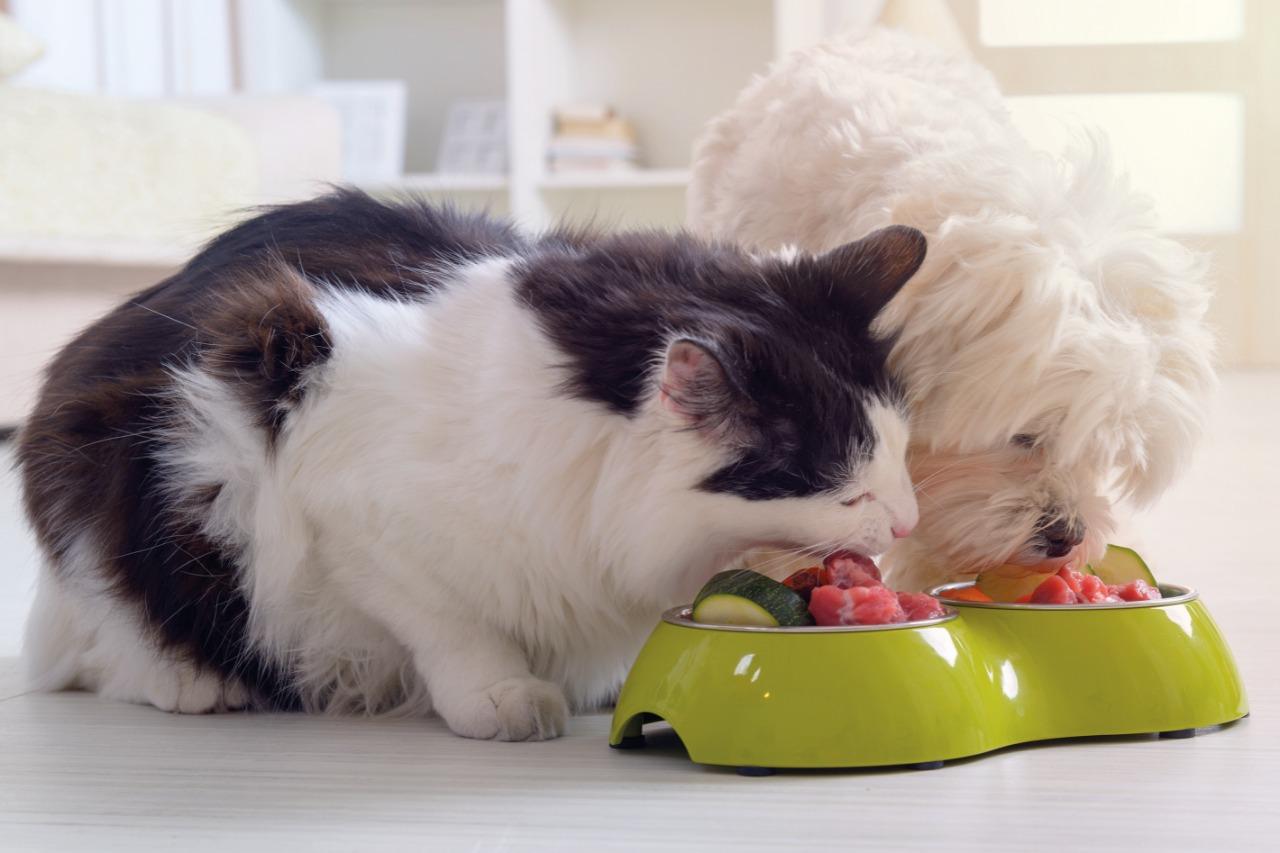 Trends
Trends
6+ MIN
03/03/2022
Current Vision of Functional Foods when feeding of Cats and Dogs
Providing pets with a nutritionally balanced diet is the responsibility of the guardians. In this context, numerous innovations related to the development of healthier foods and specific properties called "functional foods" have emerged, fostering a prosperous market. Cats and dogs present significant differences in the processes related to the digestion of food. Thus, while cats are carnivorous, dogs appear to be omnivorous like humans (1), sharing carnivorous traits such as: lack of salivary amylase, short gastrointestinal tract, and deficit in vitamin D synthesis (2). Some studies show epidemiological relationships between food components and high-incidence current diseases, such as allergies, gastrointestinal diseases, obesity, oral health, etc. (3), with obesity being the most commonly observed nutritional problem in companion animals (4). Cats and dogs have lived with humans for thousands of years (5), leading to a strong mutual emotional bond. In today's society, human beings regard their pets as close beings of emotional, therapeutic, and even psychological support, which has led to their full introduction into homes, intimately sharing the lifestyle with their guardians (6). In general, most of the owners consider them as one more member of the family according to some statistics (63% of them in the United States and more than 71% in Italy) (7 and 8), coexistence with these animals proliferates; for example, in Spain there are 5.8 million cats and 9.3 million dogs in households (9). This trend towards humanization, especially in urban areas, has led to tutors selecting foods made with ingredients for consumption or human grade, erroneously considering them to be more appetizing, digestible and safe (7). However, this categorization is not legislated in any animal feed regulations or regulations. On the other hand, as is the case with their owners, companion animals are increasingly affected by diseases linked to health problems related to overweight and obesity (10), such as diabetes, cancer, respiratory diseases, musculoskeletal system and skin disorders, which projects a reduction in life expectancy. The reasons and/or practices that cause these health problems in our pets are mainly (11 and 12): Excessive caloric intake due to errors or deficits in the follow-up by the owners of the recommended nutritional guidelines. An absence or excessive decrease in physical activity routines. The transmission of bad eating habits from their owners to pets (13). A certain confusion among consumers in the face of a wide and varied range of food. Therefore, guardians play a fundamental role in the health of their animals, mainly through the selection of food through the commitment and responsibility of maintaining the health and well-being of their pets by providing a nutritionally balanced diet (3 and 5). Today's consumers have a growing interest in knowing more about the nutritional content of food (quantity and quality), with special detail on those nutrients that may have adverse effects on health such as certain fats, excess sugars, some anti- feeding etc. (14 and 15). There are different studies that have shown some deficiencies in the labeling of its products by the pet food industry, the most common being: inadvisable nutritional profiles, breaches of legislation, poor labeling of ingredients/contents (16). The correct labeling will contribute decisively when selecting a food product for pets. Likewise, guardians look for ways to improve the health, quality of life, longevity and well-being of their companion animals, looking for food that is most similar to human food because they tend to anthropomorphize their pets (6). This context is inducing the appearance of numerous innovations in the development of healthier foods, among which the so-called "functional foods" stand out, with a prosperous future market. Functional foods are those that, in addition to providing essential nutrients (water, proteins, fats, carbohydrates, vitamins, and minerals), provide health benefits when consumed regularly as part of a diet (17). In the function of foods with beneficial properties, the presence of functional ingredients (bioactive compounds, also called nutraceuticals) is key, and their development is possible through strategies that allow the addition of these functional ingredients, increasing their content or limiting others that could have a negative or deleterious effect. However, this new type of product, more nutritionally and functionally specialized, requires consumer awareness, making the pet food sector responsible for transmitting the necessary knowledge so that the qualities of functional foods are understood and known. This type of food constitutes a new category of products within pet food. In recent years, there has been a great interest in functional foods in the pet sector (18), even knowing that consumers are not aware or aware of their existence, the transmission-understanding of the labeling of these products being essential. products for cats and dogs by consumers. The consumption of these functional foods would complement the supply of conventional products, provided that the production processes are capable of offering competitive prices to be purchased regularly. Recently, a study has confirmed that many (most) veterinarians agree with the use of functional foods when they perceive these products to be safe and effective, suggesting that rigorous scientific rigor be applied in their marketing (18). In conclusion, companies in the pet food sector are considerably increasing the incorporation of functional foods in the diets of cats and dogs, despite the limited scientific evidence that supports their effect on these animals, so it is necessary to encourage research to determine its justification, safety and efficacy. BIBLIOGRAPHY 1. Bosh, G., Hagen-Plantiga, E. A., & Hendriks, W. H. (2015). Dietary nutrient profiles of wild wolves: insights for optimal dog nutrition? British Journal of Nutrition, 113: S40–S54. 2. NRC. National Research Council (2006). Nutrient Requirements of Dogs and Cats. 2nd ed. National Academies Press; Washington, DC, USA. 3. Wernimont, S.M., Radosevich, J., Jackson, M.I., Ephraim, E., Badri, D.V., MacLeay, J.M. et al. (2020). The Effects of Nutrition on the Gastrointestinal Microbiome of Cats and Dogs: Impact on Health and Disease. Frontiers in Microbiology, 11, 1266. 4. German, A.J. (2006). The growing problem of obesity in dogs and cats. The journal of nutrition, 136: 1940S–1946S. 5. Grześkowiak, Ł., Endo, A., Beasley, S., & Salminen, S. (2015). Microbiota and probiotics in canine and feline welfare. Anaerobe, 34: 14–23. 6. de Godoy, M.R., Kerr, K.R., & Fahey, G.C. (2013). Alternative dietary fiber sources in companion animal nutrition. Nutrients, 5: 3099–3117. animal nutrition. Nutrients, 5: 3099–3117. 7. AVMA. American Veterinary Medical Association (2012). US Pet ownership & demographics sourcebook. AVMA: Schaumburg, IL. 8. Russo, N., Vergnano, D., Bergero, D., & Prola, L. (2017). Small pilot survey on parents' perception of the relationship between children and pets. Veterinary Science, 4: 52. 9. ANFAAC. (2021). Census study. National association of pet food manufacturers (ANFAAC). 10. Theysgeur S, Cudennec B, Deracinois B, Perrin C, Guiller I, Lepoudère A, et al. (2020). New bioactive peptides identified from a Tilapia byproduct hydrolysate exerting effects on DPP-IV activity and intestinal hormones regulation after canine gastrointestinal simulated digestion. Molecules, 26: 136. 11. Chandler, M., Cunningham, S., Lund, E. M., Khanna, C., Naramore, R., Patel, A., & Day, M. J. (2017). Obesity and Associated Comorbidities in People and Companion Animals: A One Health Perspective. Journal Comparative Pathology, 156: 296–309. 12. Öhlund, M., Palmgren M., & Holst B.S. (2018). Overweight in adult cats: a cross-sectional study. Scandinavica Veterinary Act, 19, 60: 5. 13. Marshall-Pescini, S., Passalacqua, C., Miletto Petrazzini, M.E., Valsecchi, P., & Prato-Previde, E. (2012). Do dogs (Canis lupus familiaris) make counterproductive choices because they are sensitive to human ostensive cues? PLoS One, 7, e35437. 14. Brugiapaglia, A., Lussiana, C., & Destefanis, G. (2014). Fatty acid profile and cholesterol content of beef at retail of Piemontese, Limousin and Friesian breeds. Meat Science, 86: 568–573. 15. Realini, C. E., Guàrdia, M. D., Díaz, I., García-Regueiro, J. A., & Arnau, J. (2015). Effects of acerola fruit extract on sensory and shelf-life of salted beef patties from grinds differing in fatty acid composition. Meat Science, 99: 18–24. 16. Hill, R.C, Choate C.J., & Scott, K.C. (2009). Comparison of the guaranteed analysis with the measured nutrient composition of commercial pet foods. Journal American Veterinary Medical Association, 234: 347–351. 17. Hasler, C.M. (2000). The Changing Face of Functional Foods, Journal of the American College of Nutrition, 19: 499S–506S. 18. Elrod, S.M., & Hofmeister, E.H. (2019). Veterinarians' attitudes towards use of nutraceuticals. Canadian Journal Veterinary Research, 83: 291–297. AUTHORS Dr. Domingo Ruiz-Canoa,* - A) Mr. Ginés Sánchez Carrascob - B) Professor Marino B. Arnaoc - C) Postal addresses of the authors A) R&D Department of ALINATUR PET FOOD, S.L., Lorca, 30817-Murcia, Spain. B) Production Department of ALINATUR PET FOOD, S.L., Lorca, 30817-Murcia, Spain. C) Department of Plant Biology (Area of Plant Physiology), Faculty of Biology, University of Murcia, 30100-Murcia, Spain. * Correspondence author: Domingo Ruiz Cano e-mail: [email protected]
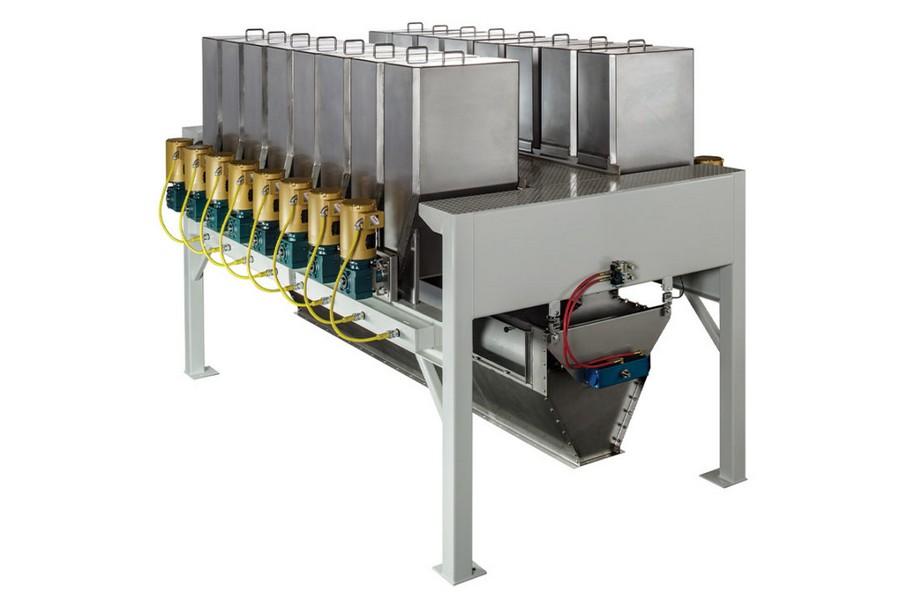 Dosing
Dosing
8+ MIN
02/03/2022
Benefits of modern batching systems
Batching systems play an important role in product quality and plant efficiency for pet food and treat processors. Equipment design can ensure product uniformity, consistent product flow, and efficient changeovers from batch to batch. There are a number of common options for batching systems in pet food and treat applications, and processors must consider several factors when looking to upgrade their facilities. Evaluating batching systems 'When considering an automated batching system for pet food ingredients, it is important to look at several factors which will influence the type of batching system recommended and optimize ingredient cost savings and overall ROI,' said Sharon Nowak, business development manager, Coperion K-Tron USA Food & Pharmaceutical Industries, Sewell, N.J. 'The top three for consideration include batch accuracy required for the specific ingredient, desired batch times, and overall plant design considerations including height limitations, space requirements, and support structures for the batching system.' 'It's a little different for everyone,' added Matt Lueger, vice president of sales, NorthWind Technical Services, Sabetha, Kan. 'But the big factors that we typically see are accuracy, traceability and flexibility. Most customers not only want a system that consistently produces a quality product, but also tells them what went into each batch without restricting their ability to continually change their ingredients or recipes.' Pete Ensch, chief executive officer, WEM Automation, LLC, New Berlin, Wis., agreed on the importance of traceability for today's processors. 'The batch system needs to incorporate lot code traceability,' he said. 'Pet food producers' value is directly linked to their track record of producing safe quality food. In the event that something goes wrong, you need the ability to quickly track the problem and contain it. Traceability needs to be automated and working in the background. Beyond the safety side, traceability also helps to control inventory management and control, and can be linked back to your ERP to help automate purchasing. This keeps production flowing and controls cost.' Other factors to take into consideration include throughput, types and quantities of product that need to be conveyed, and quality and repeatability. 'At the end of the day, you need a batching system that can accurately weigh out your ingredients and consistently mix them,' Ensch explained. 'Pet food has some unique challenges in that there are many different ingredients with a variety of densities and flow rates. Several of the raw ingredients, because of the nature of protein, have a significant amount of variability. Equipment and controls need to be able to handle the de variety. All of the downstream processes like extrusion and drying perform better if you provide them a consistent, quality input.' Batching options Modern batching systems are designed with factors such as accuracy, reliability, traceability, flexibility and food safety in mind. 'Due to the increased food safety regulations and requirements to adhering to exact ingredient percentages in a given pet food recipe, the use of high accuracy LIW [loss-in-weight] batching using gravimetric screw feeders is quickly becoming the most reliable batching device of choice,' Nowak said. 'LIW batching utilizing Coperion K-Tron high-accuracy screw feeders provides a significant accuracy and process time advantage over traditional GIW [gain-in-weight] batch techniques. LIW batching is used when the accuracy of individual ingredient weights in the completed batch is critical or when the batch cycle times need to be very short. In addition, LIW feeding affords broad material handling capability and thus excels in feeding a wide range of materials from low to high rates.' Regardless of feed rates, LIW batching can offer accuracy, speed and variability benefits over traditional GIW methods. (Source: Coperion) 'There are several different types of batching systems,' added Joe Lewis, marketing, Sterling Systems & Controls, Inc., Sterling, Ill. 'These include semi-automatic hand prompt/add batching systems, semi-automatic self-contained 'kitchen type' batching systems, and automatic batching systems.' Utilizing different systems and features allows pet food and treat processors to fine-tune the batch process from start to finish. Options include manual or automatic batch delivery, various ingredient storage methods, and integration to the ERP system to communicate production schedules and ingredient usages. 'Most modern batch controls have dozens of features, but a couple of useful ones for pet food are an order grid and automatic bin level checking,' Ensch said. 'An order grid includes order number, formula name, the amount of material to be produced, the required date, destination bins and comments. The grid can have orders entered direct or interfaces with your ERP system. Automatic bin level checking has the system check bin levels of each ingredient in a production run prior to starting the batch. The system will alert the operator of any insufficient ingredients. 'Another useful feature is production usage tracking and inventory management with lot code tracking,' Ensch added. 'This allows the batch system to track material used for each production run, batch, and track respective lot codes for ingredients. Statistical process control (SPC) charting is one more feature that's great for fine-tuning the batch process. A system tracks the production data to the level to produce statistical process control charts. Being able to understand when a system is in control or out of control and having the data to either troubleshoot it or reduce variation for greater accuracy can change your business.' Product quality There are several ways in which batching systems can impact product quality. 'Vacuum conveying systems help to provide the right amount of ingredients or final products to the next processing or packaging step,' said Andrea Bodenhagen, communication and content manager, Piab Vakuum GmbH, Butzbach, Germany. 'Thanks to the closed system, it also provides a dust free environment and protects the product from contamination. While the pet food industry is often still using mechanical or manual material handling, vacuum conveying systems are state of the art in the pharma and food sector. Pet food manufacturers, therefore, benefit from the long-term experience of Piab in these sectors as well as all the developments that have been done for these industries to keep the original product quality during the conveying process.' 'Batching systems play a significant role in the overall product quality of pet food and treats,' Lueger said. 'Not only in the accuracy and consistency of the ingredients that make up the product, but also in the visibility of what went into the product in the event of a quality issue. Batch reports and historical trends can go a long way toward preventing future product quality issues.' Jim Gaydusek, sales director, United States and Canada, Cozzini LLC, Chicago, agreed that batching systems have an important role to play in consistency and product quality. 'One of the greatest benefits is consistency from batch to batch,' he said. 'Auto management of recipes removes much of the human factor and reduces processing error. Scales accurately weigh the ingredients to ensure the proper weight(s) get added and the HMI [human-machine-interface] can sequence through the processing steps according to the program.' Plant efficiency Batching systems can also impact plant efficiency for pet food and treat processors. 'In addition to improving product quality over traditional manual weighing methods, the automation of the material handling/product transfer as well as the batching can greatly affect overall efficiency,' Nowak said. 'The use of automated dispensing systems, which can also integrate pneumatic conveying systems for material transfer, can greatly reduce the amount of human interaction as compared to manual methods of weighing and transfer. This maximizes social distancing and adheres to strict COVID guidelines of safety. 'Properly weighing and accurately delivering the ingredients without manual intervention can result in a number of process advantages, including overall food safety, fewer mistakes, better accuracy, lower bulk costs, improved product quality and savings in manufacturing costs,' he added. 'Eliminating manual batching reduces scrap costs, increases efficiency and throughput,' Lewis noted. 'Automatic systems can be customized with multiple scales for speed of batch production without sacrificing accuracy or quality, resulting in fast high batch rates and accuracy of weighments. Dust containment and collection options for automatic batching systems improves safety and operator efficiency.' Processors must be able to track and trace each ingredient throughout the process to ensure quality and safety and, in the case of a product issue, pinpoint exactly where and what went wrong. (Source: Coperion) To maximize overall efficiency, factors such as system design and sequencing must be taken into account. 'You want a system that moves from one batch to the next seamlessly and with little idle time between batches,' Ensch said. 'Some of this is system design, things like having holding vessels, surge bins and multiple scales so that you can weigh up ingredients before the mixer; optimizing cleanout times between batches and changeovers; the use of high and low bin level indicators and automated routing to make sure the batching system is never starved for ingredients. The system must manage all the timing, so the batching process is nearly continuous in nature.' New advancements Batching systems continue to evolve to meet changing needs and requirements. Modern batching systems now have huge advantages over their predecessors in a multitude of areas. 'Over the past decade the number of different types of formulations and the raw ingredients used has grown exponentially,' Ensch said. 'This has made batching systems larger and more complex. Having a blending control system that has formula-based scaling and mixing parameters is extremely helpful. The trend of higher protein pet food has also increased the content of fibrous protein ingredients, which have the much greater variation. Formulations contain many ingredients and there is a need for a batch system that can measure major, minor and micro ingredients with very low dispersions like vitamins and minerals.' 'There have been a significant number of design improvements to batching systems for pet food and treat processing,' Nowak said. 'They include improvement in weighing technologies and batching controls, improvements in overall design of equipment to improve cleanability and food safety while minimizing downtimes, improvements in feeder design options ideal for difficult flowing materials, and improvements in feeder technology to alleviate pressure/vacuum influences on the feeder output.' Advancements in technology have also vastly improved traceability of ingredients. 'The amount of technology that is utilized to track and trace ingredients continues to evolve,' Lueger noted. 'From simple bar-coded lot numbers on bags to RFID [radio-frequency identification] tracked totes/IBCs [intermediate bulk containers] and hoppers on tracks or AGVs [automated guided vehicle]. Innovation and technology gains continue to support traceability regardless of size, equipment configuration, system capacity, etc.' By Richard Rowlands & Matt Lueger Northwind Technical Services - Pet Food processing
 Market Information
Market Information
2+ MIN
25/02/2022
QRILL Pet Receives Accreditation from the Pet Sustainability Coalition
The PSC, in conjunction with Planet+Purpose Solutions (an independent, third-party verification partner) has selected QRILL Pet for this accreditation based on the company's ongoing commitment to sustainable krill harvesting practices and its dedication to the pet industry. QRILL Pet became a member of the PSC in 2020 and is excited to join the prestigious group of companies with PSC accreditation. 'We want happy and health pets along with a healthy earth,' says Andrew Fuente, Sales Director QRILL Pet – Americas, Aker BioMarine. 'To that end, it's very important for us to further strengthen our efforts for QRILL Pet, and by working with the PSC, we are taking our sustainability position to the next level. This accreditation allows us to be a big part in creating a more sustainable pet industry and we believe that our customers will see the benefits and value in this.' Aker BioMarine has been on the forefront of sustainability since inception. In fact, before the company deployed its very first fishing net in the Southern Ocean over 15 years ago, they reached out to WWF-Norway to ensure that their fishing operations would have as little impact as possible on the Antarctic ecosystem. Today, Aker BioMarine's krill fishery is rated as the world's most sustainable reduction fishery, receiving an 'A' rating from the Sustainable Fisheries Partnership for 7 years in a row. Overcoming the global challenges that will impact and drive the future of the krill business are essential goals for Aker BioMarine, and this mission aligns perfectly with the values of the PSC. The PSC envisions a thriving and collaborative pet industry that creates positive impact for the communities and environments where they do business. "The Pet Sustainability Accreditation means that a company has measured, third party verified, and committed to continuously improving the impact of their business operations. By aligning the assessment and improvement of their impact with the United Nations' Sustainable Development Goals, accredited companies are making progress on these global initiatives and making business decisions that benefit people, pets, and the planet."- Ashley Lane, Accreditation Manager, Pet Sustainability Coalition About QRILL Pet QRILL Pet is a product of Aker BioMarine, a leading biotechnology company developing and supplying krill-derived products for consumer health and animal nutrition. When developing our functional marine ingredient for pets, we kept our focus on the needs of pets and pet food formulators. Aimed at keeping pets healthy, QRILL Pet delivers long-chain omega-3 fatty acids, marine proteins, choline and the antioxidant astaxanthin. The unique distinction of krill omega-3s is that they are mainly bound to phospholipids. by Qrill Pet - Aker Biomarine
 Trends
Trends
8+ MIN
24/02/2022
"Sustainability in the Pet Food Industry"
Each one with different degrees of practical execution, but all promoting changes and questioning the current paradigms of production, distribution and consumption of the goods that society requires to run properly. The pet industry can´t break free from this reality and innovations are being incorporated aimed at increasing sustainability and reducing the environmental impact of responsible pet ownership. The deployment of these changes are taking place simultaneously at various organizational levels. Starting with the most formal level, all the national ones have approved laws to control industrial activity to minimize its environmental impact, in our country there is a national framework and provincial regulations, all these laws are mostly based on the sustainability objectives of the United Nations, and are the guiding framework for the other organizational levels. Then we have several examples of second-degree institutions such as business chambers or federations, non-governmental organizations such as ISO or foundations dedicated to sustainability and certification bodies. At a more basic level are companies of various sizes, among which transnationals are clearly ahead. It is worth to set apart between companies that produce general goods or services and the emergence of new companies that provide goods or services specifically related to sustainability, such as The Ocean Clean Up, a company whose objective is to remove floating plastic from rivers and oceans around the balloon. Finally, and not least, it is the decentralized organization of citizen-consumers, who have also incorporated new behaviors and fundamentally consistently demand greater environmental care from companies and governments. Figure 1: cascade of relationships between the different international commitments, national legislation, business strategies and demands / new behaviors of citizens around the new vision on business sustainability. Now, what are the specific guidelines and concepts that apply to the pet industry and its social relationships At the legal level, all companies in Argentina must comply with the regulations derived from Law 25675 (2002) National Environmental Policy, on the other hand, there is already specific legislation on climate change Law 27520 (2019) Adaptation and Mitigation to Climate Change . Each province and municipalities also got some specific regulations that are those of effective compliance for the operation of production units. The management of gaseous emissions, liquid effluents, industrial and hazardous solid waste, are some of the key aspects for obtaining the Environmental License, a document that indicates compliance with the legislation. In the business field, additional certifications have emerged that seek, in addition to complementing, to some extent exceed current regulations to achieve an organization oriented towards sustainability in all its operations and business strategies. The most important are the ISO 14001 Environmental Management System standards and the certification as Company B, which implies changes in the same structure of the corporate contract to include caring for the environment as a business objective at the same level of importance as the profit itself. Of all concepts that have emerged from this new way of thinking about our activities, perhaps the most important on a practical level are the Environmental Impact Analysis and the Life Cycle Assessment. The first focuses on determining the individual incidence of an operation or ingredient with respect to standardized environmental indicators such as the emission of greenhouse gases or the contamination of bodies of water. The second monitors the entire life cycle of a manufactured product, from the purchase of its ingredients to its final disposal as waste. Both concepts help to make practical decisions and carry out objective evaluations of our industrial activities to constantly and significantly reduce the negative environmental impact, but also to increase the positive one. Let's check the sources of information on environmental impact of the pet food industry. The most important study carried out to date was by FEDIAF (European Pet Food Industry Federation). The study did a thorough analysis on the value chain of our industry with the concept of 'cradle to grave' (from the cradle to the grave, literally or the entire life cycle as it is usually used in Spanish). The first important point to highlight are the standardized impact factors assessed: Climate Change - Biogenic Climate Change - Climate Change, Use and Transformation Particulate Material - Acidification - Eutrophication and Pollution Water use - Land use - Fossil resources On the other hand, the value chain was divided into four areas: Ingredients Manufacturing Packaging Use and Final Disposal (landfill, recycling, reuse) Finally, it should be mentioned the dry and wet products for cats and dogs were all analyzed separately. Since the results of each impact factor are expressed in very different units, a qualitative comparison of each area is presented as a percentage. Figure 2: Comparative graphic analysis of the study on the environmental impact factors carried out by FEDIAF for the pet industry in Europe. Percentage environmental impact of each of the four areas of the value chain in the four types of food, in which the category was divided to conduct the study. The result of the analysis makes it possible to clearly differentiate between wet and dry food. Thus, for example, pet foods got a greater environmental impact due to the ingredients that compose them, and in wet foods the impact of the packaging increases in percentage, mainly due to the fact they are packaged in smaller containers. Another interesting fact that emerges from the study is the four areas of the industrial chain, the ingredients are the ones that have the greatest combined impact, and in particular they contribute to Climate change and the Eutrophication of waterways. Figure 3: Dry pet food. Quantification of the impact of each area of the value chain on the different environmental factors studied. As can be seen, the ingredients have the greatest environmental impact in this type of product. Figure 4: Wet pet food. Quantification of the impact of each area of the value chain on the different environmental factors studied. As can be seen, the ingredients and packaging have the greatest environmental impact in this type of product. These important conclusions emerge from FEDIAF's analysis: Ingredients have the greatest impact in the environmental of our industry, the generation of those ingredients in reality, and especially those of animal origin. For example, beef has an environmental impact on the climate change factor - greenhouse gas emissions that is 10 times higher than that of soybean oil, to take just two examples. (See figure 5). In dry foods, the contribution of ingredients to environmental impact is significantly higher than in wet foods. Figure 5: Greenhouse gas emissions with impact on climate change in the production of various foods. Source Our Wolrd in Data, official database of the University of Oxford used by the UN to monitor the progress of the 2030 sustainable development goals. Packaging has the second highest weight in pet food manufacturing considered only the materials. In the case of packaging, its impact is due to the consumption of fossil resources and contribution to climate change, but also to the emission of particulate material. The contribution of packaging is significantly higher in the case of wet pet foods, since they use smaller containers and the proportion of packaging in the product is higher. Distribution is in third place as the area with greater impact on the environment, mainly due to the consumption of fossil resources, the contribution to climate change and the pollution of water courses. Being its relative impact a little higher in wet pet food than in dry pet food. From the conclusions of the FEDIAF study it is evident that any serious initiative to reduce the impact of our industry on the environment must include ingredients and packaging, analyze two practical cases to exemplify the use of the concepts defined so far in the real world, Changes in the packaging, and please don´t confuse recyclable with low environmental impact. In 2019, North American pet food company Earth Animal considered a packaging change for its dog food Wisdom® I wanted to understand the total environmental impact of three different flexible packaging options: Biological base (your existing packaging) Traditional multi-layer petroleum-based plastic Monomaterial ready to recycle Through the services of the non-governmental association Pet Sustainability Coalition[1],the main benchmark in sustainability for the pet industry in the US, a comprehensive Life Cycle Assessment was carried out in order to compare the options. The main summary is without a correct life cycle assessment an incorrect decision would have been made. Figure 6 shows a summary of the results of the life cycle assessment that was used to make the final decision. Figure 6: Earth Animal compared the impact of fossil fuel use, greenhouse gases, and water consumption throughout the life cycle of three different packaging options. Results for every 11500 bags of 500g capacity. As can be seen in the graphical analysis, although the bio-plastic that the company currently uses consumes a little more water during its production, it consumes fewer fossil resources in its preparation and emits less greenhouse gases. With which it is clear that bio plastic continues to be the best option globally analyzed. An important point to consider is that, through a complete life cycle assessment, it becomes clear that a recyclable material is not always the best option to make a change. Reducing the impact of ingredients in the pet food industry. Another case analysis carried out by the Pet Sustainability Coalition for Josera, a US pet food company, was carried out to compare the impact of two different ingredients in a hypoallergenic formulation, taking into account not only the impact of the ingredient itself, but also the of its production and transport. Figure 7: Comparison of the impact on greenhouse gas emissions with a negative impact on climate change for two formulations of a hypoallergenic product from the North American company Josera. The environmental impact was calculated taking into account all stages of the life cycle of each ingredient, from its production on the farm to its transport to the pet food factory. Data from the Pet Sustainability Coalition. The conclusion of the study carried out by the Pet Sustainability Coalition for Josera is that the formulation of a food to reduce skin allergy problems based on insect proteins is 82% less environmentally expensive for the planet than a product based on lamb proteins. While the relative impact of the plant and mineral ingredients that make up the insect meal formulation is higher, the environmental footprint of insect protein is only 18% that of lamb. Therefore, the total environmental impact of the insect-based product is a lot lower. It should be noted that insect proteins and plant proteins have a significantly lower environmental impact than proteins of animal origin, especially those of beef. That´s why a real way to reduce the environmental impact of our industry, especially the emission of greenhouse gases, is to replace animal protein sources with vegetables and insects, which emit less greenhouse gases, use less surface area. soil and less pollute waterways. Finally, we will briefly analyze a recent article that allows us to put the impact of the pet food industry in context. The study is only for dry foods so the total values of the industry added to wet foods are higher. Emissions: 56 - 151 Mt CO2 eq, which is comparable to 1.1% - 2.9% of total agriculture. Emissions from the pet industry would rank it as the 60th country (Philippines) Land use: 41 - 58 Mha land use, equivalent to 0.8 - 1.2% of total agriculture. Impacts comparable to an area twice the size of the UK. Water use: 5 - 11 km3 water, 0.2 - 0.4% of total agriculture. Although it is not one of the industries that has the greatest impact on the environment, our activity is not negligible at all. That is why our responsibility as professionals in the sector is to seriously evaluate the alternatives to minimize our environmental footprint. Source: WMG
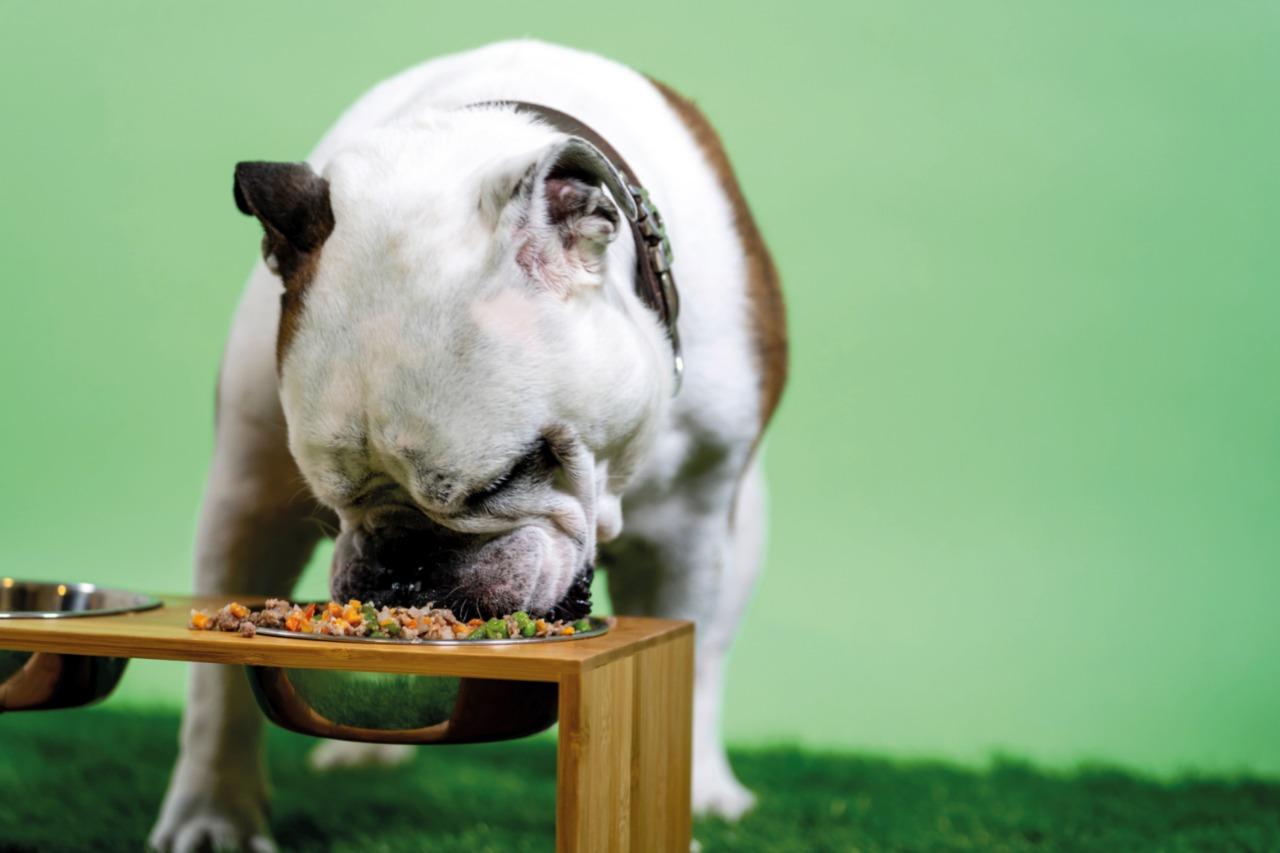 Trends
Trends
4+ MIN
23/02/2022
Por Luciana Chippano
Trends in freeze-dried pet food mixes
And so, like the food industry itself, the pet food sector is undergoing significant changes as a result of changes in the lifestyle of owners and their pets. The general market trend has been, for some years now, moving towards the development of foods specially designed to treat the most common problems and conditions of pets: digestive problems, in the joints, sensitive skin and coat and obesity, for example. In this sense, freeze-dried pet food is a great ally. But what is really freeze-dried food? Freeze drying is a process similar to dehydrating food; It is carried out with the aim of increasing its durability and nutritional quality. This special way of drying the raw material eliminates the water thanks to the product freezing, the pressure is reduced and the water it contains is sublimated by converting it into water vapor. The great benefit is that there is almost no loss of nutrients. The truth is that, as pet owners seek new ways to perfect their pets' diet, the integration between mixers and supplements has increased: from pork, pumpkin and turkey to blueberries and green New Zealand mussels, we find every day more variety in pet food components. Thus, it can be said that consumer trends continue to move towards preventive care and diversification of food. Mixers are freeze-dried supplements that can be added to typical croquettes or patés, or they can be served alone as a healthy snack. These recipes typically do not contain grains, gluten, corn, wheat, soy, or by-products such as growth hormones, antibiotics, artificial colors, flavors, and preservatives. 17% of those surveyed said they are buying dog food toppers, mixers and add-ons, while 14% do so for their cats. 18% of those surveyed agreed with the use of mixers and toppers at meals. The reception of these new accessories is still small but it will be more and more positive. What is the relationship between freeze drying and mixers? In this way, there are two main factors that relate them: Freeze drying is a "safe" process to increase the confidence and bond of pet owners with these more specialized products. It is a safety test that allows them to be more open to trying food options other than croquettes. Although freeze-drying is a process that increases the price of dry feed, you can take advantage of its benefits by diversifying meals with freeze-dried options such as mixers or snacks to add a new variety of food. To achieve this, we need, from the industry, to create greater awareness about the benefits of a rotating diet and the intake of a wide range of nutrient sources. "Pet lovers are beginning to understand that pets, like people, can enjoy a diverse diet instead of always consuming the same food." Keith Arnold, (https://www.linkedin.com/in/keitharnold1/) from Champion Petfoods. Mixers and toppers, beyond the nutritional benefit Pet food is always aimed at providing complete nutrition. However, with the new supplements such as mixers or toppers something remarkable happens: beyond the fact that they provide a wide variety of different proteins, they are a sign of affection for pets. The factor by which they are booming is because, quite simply, they are a product that has managed to be the most convenient, they fulfill more than one function: they are a new experience for pets, they are a pampering on the part of their owners, and they are an improvement in the nutrition of the animals. Plus, they are a great way to hide the smell of supplements, and this is especially good for animals that are a little… exquisite. They are also very practical for cases in which pets need more than one supplement, since, for example, thanks to a single topper, a supplement for joints, bones, probiotics and improvement of the digestive system can be incorporated. The wide range of uses that freeze-dried foods offer is appealing: they can be used as a food on its own, as a food supplement, or even as healthy snacks. Companies that innovate with freeze-dried food Some of the companies that are already encouraged to innovate and implement lyophilization in supplements and toppers are: Instinct (https://www.amazon.com/-/es/motivadores-Instinct-incluye-recetas-natural/dp/B00YWPHXTK?th=1) offers a variety of mixers and freeze-dried dry food of different flavors and protein qualities. Wellness Natural Pet Food (https://www.amazon.com/-/es/motivators-Instinct-incluye-recetas-natural/dp/B00YWPHXTK?th=1) offers its mixers under the motto "no more boring bowls" and toppers to supplement the diet with protein without cereals, based on 100% raw frozen food. Stella & Chewy's (https://www.amazon.com/Stella-ChewyS-Freeze-Dried-Mixers-Grain-Free/dp/B00N240SQ2) presents mixers to complement dry feed both in nutrition and in taste and palatability. More and more people are adopting or buying pets; it is a number that is increasing worldwide. This is due, in part, to the increase in individual dwellings and the delay in paternity and maternity of the new generations. Today, freeze-dried foods, toppers and mixers represent the greatest growth opportunity for companies both large and small in the industry. It remains, then, to bet on continuing the development of this type of product that will bring mutual benefits: better nutritional quality and palatability for pets and an increase in sales and the pet food sector for manufacturers and distributors. By: All Pet Food
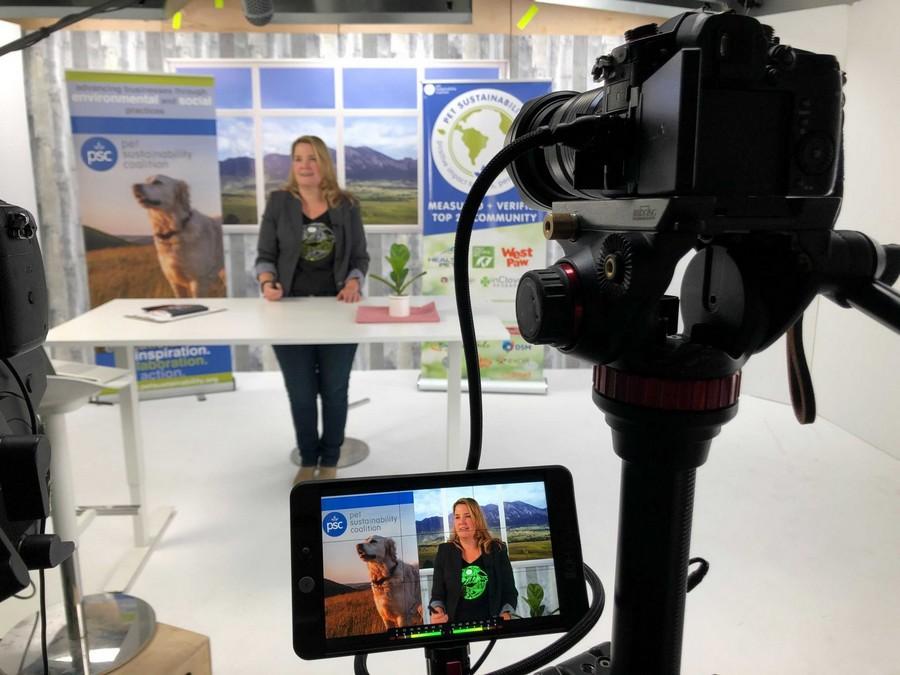 Market Information
Market Information
2+ MIN
22/02/2022
PSC Promises Pet Industry BIG NEWS At UnPacked22
This year, the Pet Sustainability Coalition (PSC) has BIG NEWS to share with the industry at the Sustainable Packaging Soiree, one of the free sessions offered Feb 22 – 24. It will feature guest appearances from Instinct, PetDine, All The Best, Stella & Chewy's, MudBay and major donors including Earth Animal. UnPacked convenes one of the most innovative communities of leaders that are pushing the envelope of possibility. With a back-to-back lineup of renown packaging speakers addressing topics like recyclable plastic films, to compostable or refillable solutions, to labeling requirements and even the social justice issues related to our industry's packaging footprint, this event is sure to turn a rather technical topic into compelling conversations featuring panel discussions and live networking. For the first time, the Pet Sustainability Coalition will host a retailer keynote by Grove Collaborative, a company transforming household products into a force for good. Add in two hands-on workshops to be sure attendees walk away with actionable next steps and UnPacked22 is making its way to the leaderboards of must-attend events. PSC's remarkable sponsors help to keep ticket prices low for attendees, offering three different ticket types to customize your experience. Unpacked Sponsors reach across the lines of competition to bring this critical event forward including Morris Packaging, Peel Plastics, Nova Chemicals, Takigawa, and Thanh Phu. These sponsors not only contribute financially to the event, but often join as co-hosts and special guests throughout the event as part of a truly engaging attendee experience. Tickets can be purchased for unlimited access to keynote speakers, panels, and workshops but those looking to dip a toe in can see keynote speaker Grove Collaborative and attend the BIG NEWS Soiree at no cost by registering for a FREE Starter-Pass. To register for tickets visit petsustainability.org/unpacked22 By Caitlyn Bolton -Pet Sustainability
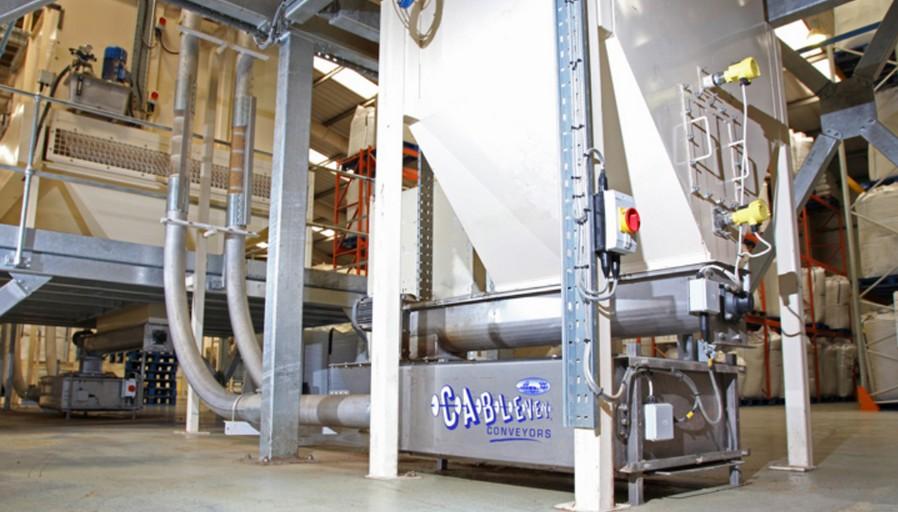 Conveying Systems
Conveying Systems
6+ MIN
18/02/2022
Advantages Of Tube Conveyors For Pet Food Manufacturers
Designed for bulk material handling over long distances, conveying systems have helped tremendously in streamlining processes, improving safety, as well as cutting down on manufacturing and labor costs. Today, you can find conveyor systems in almost every industry – from mining, agriculture, automotive to food processing, and, of course, the pet food manufacturing industry.
Pet Food Production Trends
As of 2020, the pet care industry had surpassed $179.4 billion at a compound annual growth rate (CAGR) of 5.2% despite the COVID-19 pandemic, or perhaps even because of it. Various reports stated that the demand for pets practically skyrocketed because of the pandemic. It is a well-known fact that pets minimize the feelings of loneliness and depression that were particularly common during the COVID-19 pandemic.
It's also important to mention that the pet food industry is growing about three times faster than packaged food industries. One major factor influencing this rapid growth mainly revolves around the customers' increasing awareness and concern about their pets' health. Other factors include:
The rising trends in nuclear families.
We are adopting more pets.
Pet humanization.
Premiumization.
The pet food market share can be further classified by pet type, product type, and ingredients, among several others. Dogs are the fastest growing market share based on pet type (cats, dogs, birds, fish, and others). Dry food is also expected to grow in dominance for dogs, whereas for cats, it is wet/canned food. Aside from dry and wet food, other product types include snack food, veterinary pet food, organic, and others.
Tube Conveyors
Tube conveyors are, as their name suggests, material handling systems that largely consist of a sealed tube through which the material is conveyed. They are often used in processing more fragile materials because they can protect the product from potential damage, such as collisions and exposure to high-velocity airflow.
Tube conveyors come in two main forms:
Cable and disc tubular conveyors – This conveyor uses a stainless steel cable encased in nylon to drag solid circular discs along the tube. These discs gently push the material forward through the tube.
Chain and disc tubular conveyors – Similar concept, except the cable is replaced with a chain that runs through the tube. The chain gently pulls the solid circular discs along, which pushes the material forward, similar to cable and disc conveyors.
Tube Conveyors vs. Bucket Elevators
Pet food manufacturers have plenty of options and solutions for using conveyor systems in their facilities. Most often, bucket elevators are used to transport food during processing. Yet, when it comes to bucket conveyors, there are several limitations and potential risks that need to be taken into consideration. Sanitary design and compliance are good examples.
According to the food-grade regulations set by the US Food and Drug Administration (FDA), the Food Safety Modernization Act (FSMA), and the Federal Food Drug and Cosmetic Act (FFDCA), pet food manufacturers are required to clean their conveyor systems regularly. There are many types of ingredients and materials handled and moved through these systems at different stages of the production process. All of these materials must adhere to the same sanitary requirements as human food products.
By their very design, bucket elevators are prone to causing spills, have limited layout options, require more space and maintenance. Bucket elevators are harder to clean and sanitize when compared to a tube conveyor system.
Enclosed tubing is typically made of stainless steel that is naturally corrosion-resistant. This steel may also incorporate a special finish that will make it easier to clean. Other alloys will have different properties from this point of view. Cablevey conveyors use both alloy 304 and 316, which have excellent anti-corrosive properties.
Tube Conveyor Benefits
Better Material Handling
When dealing with pet food, it's important to remember that some pellets are fragile products. Fish food, in particular, is especially prone to product breakage, which affects salability and packaging. Tube conveyor systems ensure that any product breakage will be kept at a minimum throughout the manufacturing process.
Maintaining Proportions
Building the right nutritional mix is a huge factor for pet food manufacturers to gain a considerably larger market share. As mentioned earlier, premiumization is a determining factor for the growing pet food industry, meaning that providing consistent product quality can make or break your profit margins. There have been reported cases when an incorrect mix of ingredients resulted in pet deaths.
However, maintaining the right proportions can be a challenge since ingredients can have variable densities and granularities. This can lead to separation issues and affect proportional accuracy. Cablevey's cable, disc and tubular drag conveyor system wins over buckets, pneumatics, vacuums, and other systems in this regard. This system moves material blends without actually changing the ratios designed by the nutritionist and employed by the manufacturer.
Eliminating Spillage and Product Loss
Cable and disc tube conveyors are enclosed systems that have minimal wear on long-lasting parts. Fugitive dust is kept at a minimum while also eliminating any spillage and product loss. The system also reduces the possibility of cross-contamination, which is relatively common with other transportation systems. And by using the included wiper disc and (optional) air knife, tubular conveyors can also be self-cleaning.
Flexible Design
Cablevey Conveyors also offer a great deal in terms of customization. Our tubular drag conveying systems come in different diameters such as 2″ (50.8mm), 4″ (101.6mm), 6″ (152.4mm), and 8″ (203.2mm) for different needs. Additionally, they feature a series of highly flexible and modular components that can cater to all sorts of factory floor requirements. These will help facilitate easy access and maneuverability throughout the factory. These components include the following:
Drive Units – Cables are pulled through a drive unit by an electric gear motor. Depending on the exact layout, the cable can enter and exit through either tube port so as to be in line with the specific system layout.
Funnel Outlets – Used to discharge materials from cleanouts and rotary discharges, Cablevey's funnel outlets come in various sizes and connection types to fit each plant's own needs.
Inspection Sections – Made out of food-grade plastic tubes, inspection sections allow you to inspect the conveyed product and observe the cleaning process. These inspection sections can also be installed vertically or horizontally, depending on your needs.
Sweeps – Cablevey's sweeps can change their travel to any desired direction and area available in different radius dimensions and many different angles to fit restricted spaces.
Compression Couplers – They hold the tubes together in perfect alignment for the discs to have a smooth path. Their food-grade rubber gaskets also ensure that no water, air, or dust will enter the system.
Inlet – The inlets come in various lengths and slopes to accommodate different needs and material flows. If desired or needed, multiple inlets can be used on the same system.
Turnarounds – Turnarounds contain a sprocket to move the discs and cable around the system smoothly with applied tension.
Discharges – The discharge mounted on the system can either be open or closed, allowing materials to pass through or exit the conveyor at that point.
Brush Boxes – Cables and discs pass through the Brush Box, removing any remaining particles.
Low Maintenance and Even Lower Costs
Tube, cable, and disc conveyors often use smaller drives than bucket elevators or tubular chain and disc conveyors. This translates to less noise pollution and less power usage, keeping operating costs low.
In terms of maintenance, tube systems require only periodic inspections of the discs, cable couplings, and other components. If a disc becomes damaged, pet food manufacturers only need to replace that disc without having to replace the entire cable system. And being a self-tensioning device, constant manual cable tension adjustments are not required as with other systems.
Conclusion
While plenty of conveyor manufacturers create systems for pet food processing, not all of them offer the same efficiency, gentle use, and sanitary conditions as Cablevey. Our pet food conveying equipment is perfectly-suited to move all sorts of pet food materials and mixes, regardless of their composition and fragility.
What's more, you can customize it to fit your unique needs and facility requirements while also enjoying the convenience of less downtime and maintenance at a minimum cost. Contact us if you'd like to know more about how our systems can help your pet food manufacturing facility.
by Karl Seidel - cablevey Conveyor
All Pet Food
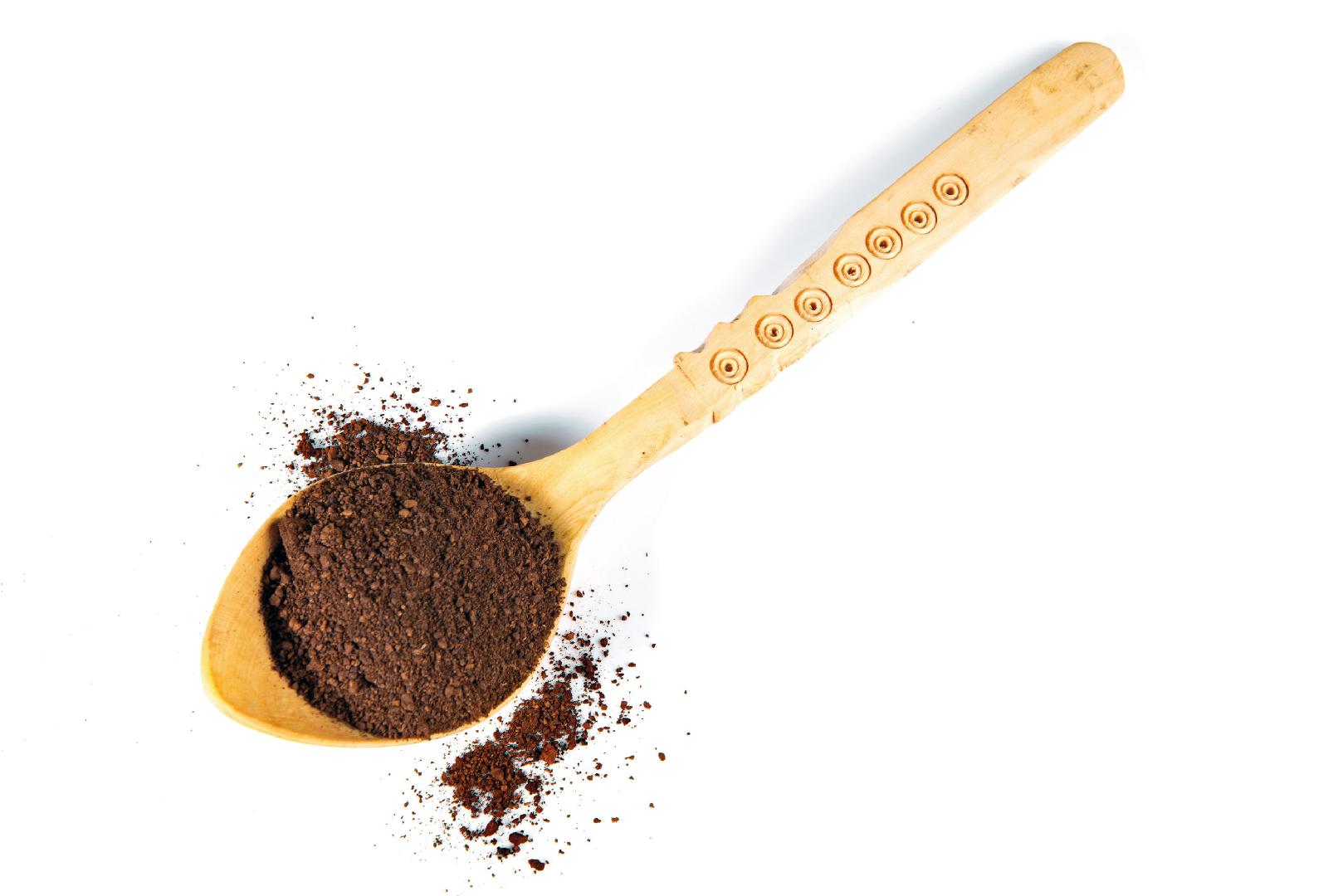 Minerals
Minerals
4+ MIN
17/02/2022
Por Luciana Chippano
Trace minerals in pet food: what are their benefits and challenges?
However, there are conflicting positions! In this article we analyze the types of trace minerals, the different voices, advantages and disadvantages of incorporating this ingredient into pet food recipes. Pet owners, and especially millennials, are increasingly interested in providing the best nutrition, care and quality of life for their pets. In this sense, trace elements such as zinc, copper, iron and manganese are an essential part of this formula for well-being, since they play a key role in cellular functions, oxygen exchange and other bodily processes. What are trace elements or trace minerals? Trace minerals are elements that are required in very small amounts to achieve a balanced diet, but which have a wide range of benefits for the proper functioning of various systems such as the immune system, musculoskeletal, skin and coat health, for example. Some of them are zinc, copper, iron and manganese. In the animal world, it must also be taken into account that the trace elements necessary for dogs and cats are not the same. When we talk about the incorporation of these components into a pet food formula, 2 aspects should be taken into account: • The shape of the mineral offered. • The amount provided. These data significantly influence the bioavailability of the mineral in the animal's body. Forms of the minerals offered Inorganic They are generally found in the form of sulfates or oxides. They are relatively soluble. Since many reactions that occur when ionized make them unavailable, inorganic trace minerals are often inefficient and must be supplied in greater amounts. As they come from extracted sources, safety and traceability must be part of the quality assurance process to avoid the inclusion of heavy metals which, if present in a diet, can be harmful to health. Organic These can be divided into complexes and chelates: Complexes They are compounds that help keep the mineral stable or non-reactive and available for absorption. Chelates These have more bonds than complexes, which improves stability while preserving their availability to be absorbed if necessary. This increases the likelihood that the mineral will reach the small intestine in a way that it can be absorbed. Trace minerals, an element of interest (and controversy) Trace elements are a component that is equally interesting and confusing in the pet food industry. Historically, pet food formulas have relied on extracted or inorganic minerals to reach nutrient levels recommended by different associations, such as the AAFCO. What happens, as we previously discussed, is that inorganic minerals are difficult to absorb, which is why additional amounts used to be added. Voices against this practice claim that this approach does not necessarily meet the real needs of pets, especially in the stages of infancy, pregnancy, or old age. Seeking to transition to organic trace elements The truth is that organic trace minerals are the most natural and the best option for pets. Opting for this option in food formulas facilitates the availability and absorption of its nutrients. However, the use of inorganic minerals has become widespread throughout the food industry (and not only for pets), which, although they are in common use, are often ineffective. Organic minerals have high stability, so they work better, they resist much more in the digestive tract, and as a result, the animal's body can absorb what it needs. Minerals are essential, but if they are ingested in excess, they can cause toxicity. Why are inorganic trace minerals poor in absorption? The structure of the inorganic mineral makes it interact with other components during the digestion process. As a result, it forms an indigestible complex that eventually ends up outside the body without being absorbed. This is equivalent to poor bioavailability because, even though the food has trace minerals, they cannot be used by the body. The form in which the trace mineral is present can influence the absorption of other nutrients in the intestine, such as: Impact on the stability of vitamins The oxidation of vitamins, such as vitamin E, can lead to a reduced vitamin function and, the cause can be the oxidation of fats by the action of trace elements. Compromised antioxidant function Research has confirmed that commonly used antioxidants can be compromised by inorganic minerals. In cases where the mineral bond is weak, there is a significant negative impact on antioxidant activity. However, and despite the possible complications of the use of trace elements, various studies insist on verifying the great benefits of their use and incorporation in pet food formulas. The latest published study, which was completed in 2020, lasted 12 weeks and included 46 older dogs between the ages of 7 and 14 with an average age of 9.8 years. It looked at skin and coat health, hair growth, activity levels, weight, and body condition. They were observed, after a period of feeding them with formulas containing organic trace minerals, an improvement in all the aspects mentioned above. Summarizing we can say that today's pets are part of the family, and thanks to the relevance they have gained over the years, the industry has invested more and more resources in improving their quality of life. In this sense, food has become a priority factor for those owners who seek to provide their four-legged friends with the best on the market. With regard to today's topic, the responsibility of producers is to keep trace minerals as available as possible for their proper absorption, and preferably to use them in an organic format, in order to ensure successful nutrition and avoid any risk of intoxication. Definitely, continuing to work on optimizing nutrition by trace elements will lead to healthier pets with stronger and longer-lasting immune, musculoskeletal and gastrointestinal systems. By: All Pet Food
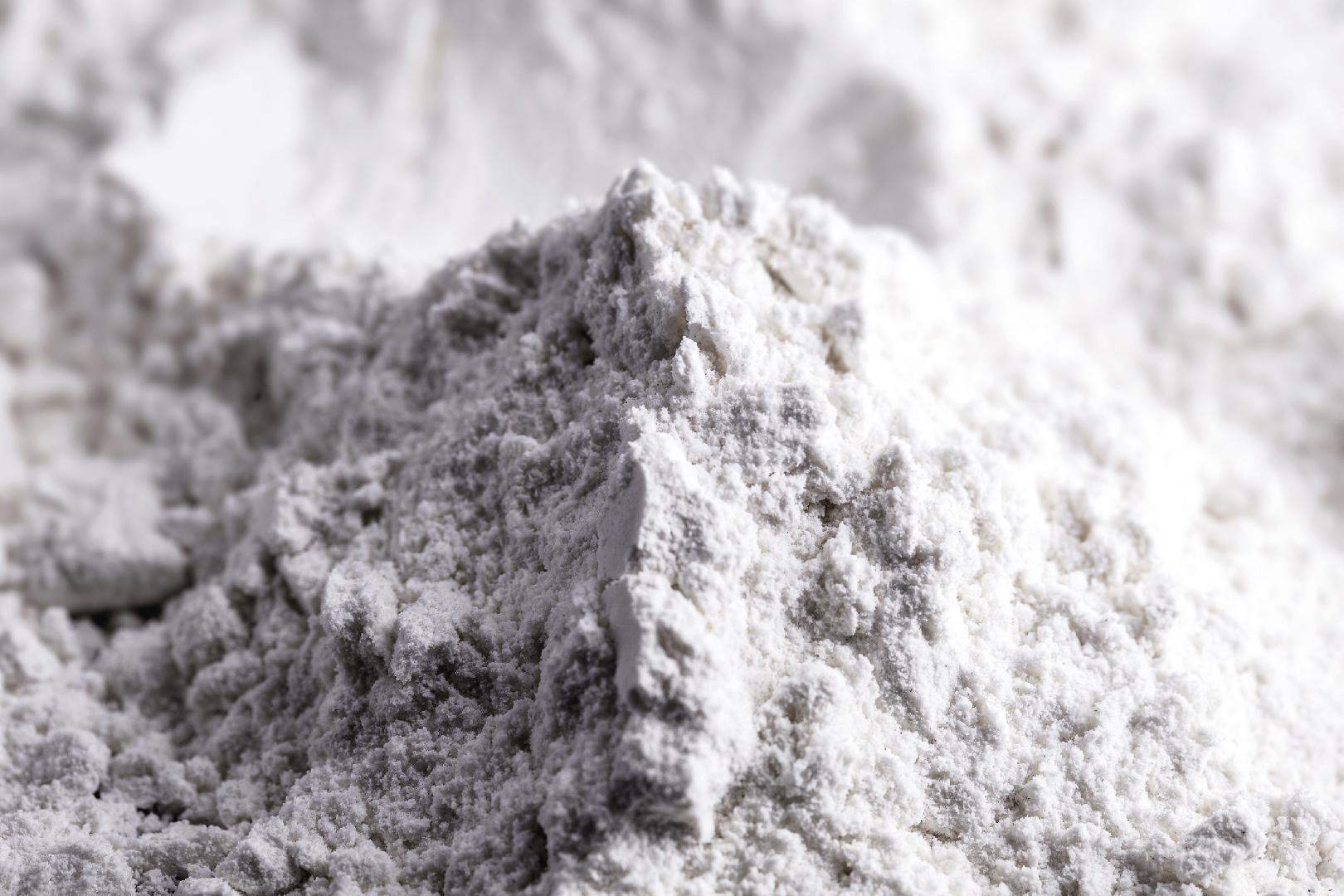 Micro Ingredients
Micro Ingredients
4+ MIN
16/02/2022
Por Luciana Chippano
Titanium in Pet Food: What about this controversial ingredient?
This note was written and published in the January Issue of All Pet Food Magazine, before the EFSA (European Food Safety Authority) published in its Regulation for the European Union 20022/63 that the authorization for use the additive titanium dioxide (E171) in food products is withdrawn. Titanium in pet food, yes or no? Titanium dioxide is found in some dog and cat food formulas. Its function? It is used to enhance the brilliance of colors and provides whitening in, for example, canned chicken or fish foods or bone-shaped dog treats. However, titanium dioxide is controversial as it has been linked to different health problems at times, including being used as pigment particles for use in human foods such as chewing gum and toothpaste. Sources such as the French Agency for Food, Environmental and Occupational Health and Safety (ANSES) state that there is not enough information about the risk of genotoxicity imposed by nano titanium dioxide. Where does the titanium dioxide used come from? The main valence state of titanium is 4+, although 3+ and 2+ states, which are less stable, are also known. The element burns in air when heated by reacting to the air in the environment, and thus the dioxide is obtained. There is also a naturally occurring titanium dioxide found in the soil. It is a stable and insoluble compound that interacts in a limited way with biota. The release of titanium into the environment is mainly related to the extraction process and the use of products containing titanium. Therefore, if titanium does find its way into plants and livestock, pet foods have some titanium from certain ingredients (although it may or may not be added later as a bleach). Is it necessary for the feeding of dogs and cats? Indeed, there are no indications that titanium or any of its components or derivatives is essential for the correct feeding of dogs and cats, and that is why the attention of new research is focused on the possible toxicity of the element. In fact, in 2006, the US National Research Council did not include it in the list of required nutrients for dogs and cats. Is titanium dioxide toxic? Titanium dioxide has a very low level of toxicity. For this, it is essential to get the right size and quantity of particles to use it in what is wanted: pigmentation and whitening, for example. Currently, and in general terms, at least 39% of the particles contained in food do not have the appropriate size. These particles (nanoparticles) are the ones that can cause damage to the body. Most recent study on titanium and titanium dioxide In Benyen's study, a sample of 120 dry and wet pet foods was tested for 0.2 to 2,300 mg per kg of dry matter (or per kg of feed residue after removal of its content). humidity). In these cases, titanium dioxide was used as a marker (because of its harmless, non-absorbable character and does not alter the digestive process) to estimate fecal production in canine and feline digestibility tests without total collection of feces. Studies that focused on the use of titanium dioxide in dogs have used dietary inclusion rates of 0.4% in dry food or about 2,667 mg Ti/kg ddm. Results Fecal recovery of titanium from 0.3% titanium dioxide incorporated into dry dog food was determined. The average recoveries were between 74 and 81% for two different diet formulations, meaning that the overall apparent absorption was 23% of intake. Encapsulated carbon dioxide was administered orally to 6 dogs in a dose of 5 g. per kg dry diet. In stool collected within 48 hours of administration, recovery of titanium was 97%. In a similar experiment, 2 grs. of titanium dioxide with newly hatched chicks as the sole source of nutrition. Mean faecal recovery was between 81 and 74%. If the collection of feces in the three dog experiments was almost complete, we can say that the total absorption of titanium was approximately 16% of the intake, which leaves us with a significant fraction ingested. Other early studies in dogs and cats Titanium dioxide was fed to four cats and one dog. The ore was treated with sulfuric acid and the dioxide was produced by hydrolysis at high pressure. The animals received the dioxide daily, except Sundays and holidays. For cats and dogs, the number of experimental feeding days was 390/480, 390/480, 175/208, 300/368, and 390/480. The mean individual doses, expressed as g TiO2/kg body weight per day, were 0.75, 0.84, 0.86, 0.80, and 0.28 g. Results • TiO2 (titanium dioxide) administered orally was not associated with adverse external health effects. The body weights of the cats were generally stable. Initial and final body weights of the dog were 9.2 and 25.3 kg. • Autopsy in two cats showed no abnormalities. Titanium was undetectable in organs, bile, and bones. For one cat, the amount of titanium in the gastrointestinal tract, including contents, was found to be 95% of the ingested dose. • Four cats were shown to be unaffected by feeding very high amounts of titanium dioxide for periods of up to 480 days. A growing dog was also unaffected. What do we conclude about its toxicity? The Committee on Minerals and Toxic Substances in Diet and Water for Animals stated that: 'titanium is essentially non-toxic in amounts and forms normally ingested. Therefore, a specific oral toxicity of titanium has not been described and no upper tolerable limit can be suggested for any domestic animal.' Negative health effects of titanium dioxide when included in pet food formulations cannot be excluded at this time. Available data on the toxicity of oral titanium in dogs and cats are insufficient, while the impact of nanoscale titanium dioxide has not been addressed. Finally, on January 18, the use of this additive was banned in Europe, so from now on we will have to start looking for alternatives to replace it without putting the health of animals at risk. By: All Pet Food
 Formulation
Formulation
2+ MIN
15/02/2022
Krill for Cats and Dogs
Research shows that consumers are spending more money on their pets' food than ever before, with the aim to keep them healthy and happy. According to recent data, Americans spent more than $103 billion on their pets in 2020. With each consecutive year, US pet industry expenditures have gone up. It's safe to say that a well-balanced diet comprised of essential nutrients is key. In the next few years, we will likely see more pet food and supplement brands utilizing functional ingredients that offer proven health benefits. The inclusion of nutraceutical ingredients such as probiotics, omega-3 fatty acids, and vitamins will become the norm. It's very likely that these ingredients will rank at the highest quality, comparable to human-grade level. Omegas for Pet Health Every pet food formula contains fats, which should be a balanced combination of the essential omega 6s and omega 3s. Omega-3 fatty acids are among the most important nutrients to support long-term health for humans and pets. Since pets and people cannot produce omega-3 fatty acids in their bodies, we all need to include them in our diets. There are many omega-3 choices on the market, making it essential to understand the important differences in sources and how they are delivered in the bodies of animals. Omega-3 fatty acids can be plant-based from sources such as flaxseeds (in the form of ALA) or can come from a marine source like fish or krill (in the form of EPA and DHA). Krill-Based Omega 3 Supplements Krill is increasingly popular. The tiny crustaceans called krill make up one of the largest biomasses on our planet. Krill happens to be an increasingly popular option in the pet nutrition space for many health benefits, including skin and coat; liver, joint, brain, and heart health; and immune system function. In fact, krill may be more efficient than other omega-3 options and can start to show results for pets at an early age. Its high incorporation and uptake of EPA and DHA into your pet's cells makes it a great option for pets of all ages. In addition to its many health benefits, krill is a sustainable ingredient. People consume omega 3s as part of their healthy lifestyle, but at the same time, it's important to know that these supplements come from sustainable sources. Pets can now benefit from all the same omega-3 benefits from krill as their human companions. By Andrew Fuente - Sales Director QRILL Pet - Americas
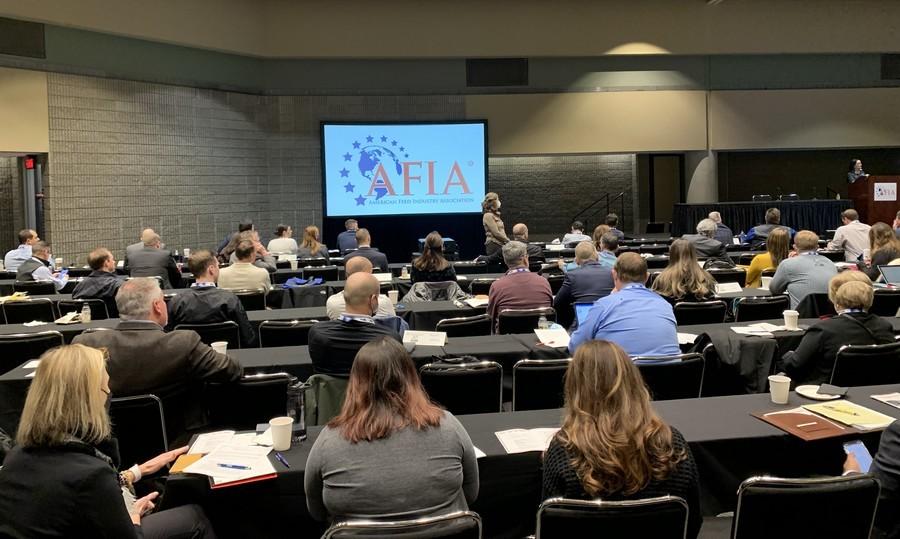 Pulses and Oilseeds
Pulses and Oilseeds
4+ MIN
14/02/2022
AFIA Pet Food Conference 2022
After an excellent breakfast, which also served to meet up with old friends and new members of the Pet Food Industry, Ryan Frank, from Mars Pet Care, welcomed everyone present and gave us an overview of what we could expect from the Conference. The conferences then began with talks by experts from AFIA and the industry, which paved the way for us to enjoy the "Emerging Issues of the Pet Food Industry", topics addressed by graduate students, the new talents of the Industry. Undoubtedly, the papers and these young graduates called everyone's attention as they addressed very current issues related to new ingredients of plant origin, among other topics of great interest. Clare Hsu from the University of Illinois was the first to take the scene and focus us in a few seconds on a very suggestive topic "Chemical composition of selected green banana flour and its effects on texture and color in canned foods, apparent total tract digestibility and fecal metabolites of adult cats'. Green banana flour? We all wondered and put aside what could distract us to focus on Clare Hsu, who undoubtedly had a lot to tell us.As this flour is a functional ingredient, gluten-free, with low levels of sugar, starch and a natural colorant, it would undoubtedly have a great application in pet food. In her study, Miss Hsu used 40 adult domestic cats and the dietary treatment was based on Rice and Potato Control food with 1,2 and 4 % sustitution of GBF; concluding at the end of the study that green banana flour has a high resistant starch content, which is indigestible and can be a source of fiber. Mrs. Hsu also concluded that when GBF was used in canned food, it could influence the texture and color and has no difference in nutrient digestibility of fecal characteristics of cats with diets containing GBF compared to Rice and Potato Undoubtedly this study that will require much more research to be definitively applied, but led us to look at the banana from another perspective within the Pet food industry. Samuel Kiprotich from Kansas State University then gave a lecture on the Application of encapsulated acidulants to control salmonella enterica in raw meat-based diets for dogs; another topic that caught the attention of the experts, since it addressed as objectives to determin the antimicrobial efficacy of encapsulated lactic acids in controlling of salmonella entérica in raw pet food, as well as to monitor the PH of this type of food. Finally Powan Sing from the University of Guelph, who could not be physically present, offered her presentation through a video on the Effect of Legumes on Canine Cardiac Function, another innovative research for the Veterinary industry of our pets. Basically the study focused on the inclusion of 0 to 5% of pulses in dog diets and its effect on their cardiac health. As we all know, legumes have been widely used in pet food for a long time and undoubtedly have a series of conditions to be an alternative protein since it isn´t dietary source of taurine and on the other hand it's a source of total dietary fiber. However, in this case the analysis of the use of pulses focused on the cardiac health effects of our pets through their different levels of inclusion (from 0-5%) and took into account different types of pulses, peas and chickpeas, lentils and beans used in canine diets, when feeding healthy dogs for 5 months. As a result of the study she got that feeding healthy dogs grain free, pulse inclusive diets with up to 45% inclusión of green peas, beans and lentils didn´t result in negative repercussions on canine cardiac health, based on the electrocardiograms performed. All of the above has a lot to do with the use of grain-free diets, with a great boom in recent years, which replaced flour grains by protein of animal origin derived from cow, pork, rabbit, duck and salmon. ; factor that contributes to reduce the appearance of allergies in our pets according to some authors. It´s a high-protein, low-carbohydrate diet, although whether grain-free diet is more healthy or not is still up for debate. Undoubtedly our industry has new challenges ahead, but our young talents, supported by the expertise of Industry professionals, universities and associations, will seek new ingredients and ideas that meet the different needs of nutrition, sanitation and equipment intended for the pet food industry in a more sustainable way… The future is guaranteed! by: Iván Marquetti All Pet Food
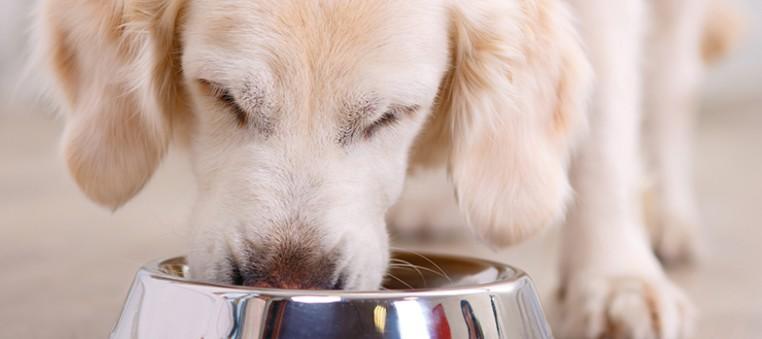 Vegetable Origin
Vegetable Origin
3+ MIN
11/02/2022
Global pet food survey: Demand for recognisable and health-promoting ingredients.
With the majority of pet owners expecting their pet's food to be the same quality as their own, there is significant demand for high quality, natural and healthy ingredients. The survey included 2,500 dog and cat owners in the UK, USA, Brazil, Germany and China (i). The research highlights how pet food trends continue to mirror those in human nutrition. It demonstrates the vast market potential for the use of clean label, health-promoting and no- or low-allergenic ingredients, with sustainability and plant-based origin also now of increasing importance. Naturalness and clean label drives pet food purchasing According to the survey, consumers are increasingly considering natural aspects when buying food for their pets. Using less or no additives makes pet food appear healthier for more than 4 in 5 pet owners. BENEO's findings also demonstrate that pet foods featuring natural ingredient claims have a significant influence on their purchase prospects, with 79% of pet owners checking the label for any ingredients they dislike. Many potential customers are also calling on brands to make it easier to track what's contained within pet foods, making this an important area of focus for producers. Alongside the demand to eliminate additives from pet foods, a spotlight is also being placed on allergenic ingredients: three quarters of pet owners agree that using no allergens, such as soy or corn, makes food for pets seem healthier(i). BENEO's rice ingredients are a viable way to reduce the allergenic components in pet foods and enhance their appeal to consumers. Support of healthy digestion a priority As in human nutrition, healthy digestion is also driving buying behaviours in pet foods. More than 90% of pet owners say that supporting digestive health improves the likelihood of them purchasing a product, inducing them to actively look for easy-to-digest products. Notably the demand for prebiotics is gathering pace and their benefits are widely perceived, with 70% of respondents agreeing that adding such fibres to pet food makes it seem healthier. A recent Mintel study further confirms this interest in prebiotic ingredients for pets, with half of the product launches of dry cat and dog food in Europe now containing inulin, fructo-oligosaccharides or chicory derived products(ii). Increasing sustainable focus Another consumer trend that is further shifting into the realm of pet foods is that of sustainability, with more than half of owners now stating that they pay attention to sustainability and the carbon footprint in purchase decisions of their pets' food. According to the survey, using claims such as 'environmentally friendly' improves consumer interest in buying a pet food product. BENEO offers a range of chicory root fibres and rice ingredients that help manufacturers address the increased demand for clean label and healthy pet foods. Besides their nutritional benefits, BENEO's range of rice ingredients have outstanding technological properties, making them suitable as natural alternatives to modified starches and hydrocolloids or enhancers of physical characteristics in many types of pet foods and snacks. The company has also built its business around the sustainable sourcing of all its plant-based ingredients. Maygane Ronsmans, Product Manager Animal Nutrition at BENEO, comments: 'The findings of this latest pet survey highlight the rising demand from owners for understandable, cleaner ingredients labels and for healthier nutrition for their pets. We are also seeing this reflected through the rising number of customers favouring BENEO's clean label and hypoallergenic rice starches and proteins, which are the ideal plant-based solutions for premium pet foods. 'The technical properties of our functional rice ingredients allow producers to use them as natural ingredients, and their nutritional benefits make them suitable for sensitive pets, or those with allergies. The combination of BENEO's natural and plant-based ingredients and its expertise in healthy nutrition help manufacturers bring to market new and relevant pet food products that meet these consumer demands.' by Beneo
 Trends
Trends
3+ MIN
10/02/2022
Por Diana Mercado Cisneros
Sustainable trends in pet food packaging
For years, pet food manufacturers have been targeting advancements in packaging sustainability as brands have sought ways to use more environmentally friendly materials and better manage end-of-life impact. Recently, however, several key trends are making sustainability a near-term imperative. Specifically, manufacturers are seeing a shift in consumer attitudes toward packaging, broader partnerships and infrastructure to support meaningful change, and an ever-changing competitive marketplace. Consumer interest in more sustainable options Consumers are increasingly committed to reducing landfill waste and protecting marine ecosystems, and are even making commitments at the purchasing level. A survey of more than 15,000 consumers revealed that nearly three-quarters are willing to pay more for sustainable packaging (Boston Consulting Group/Trivium Packaging, "Global Buying Green Report," 2020). In a recent study, specific to the pet care sector, involving 608 premium pet food (dog and cat) shoppers: 75% said they would look more favorably on a brand that would change its packaging to be more sustainable 80% said they intend to reduce their impact on the environment. And nearly 1 in 3 said they would switch to a brand with more sustainable packaging. (Source: "Premium Pet Food Purchaser Survey Results: Trends, Behaviors and Insights Pet Food Manufacturers Can Leverage to Convert Consumers," Mondi and Dow, 2019. See the full report at https://northamerica. mondigroup.com/en/pet-food-packaging-research/). Competitive pressure from leading pet food brands Nestlé Purina has set a public goal of making 100% of its packaging reusable or recyclable by 2025. The company estimates that 80% of its current packaging is already recyclable. At Hill's Pet Nutrition, the goals are also ambitious. The pet food manufacturer has committed to make its packaging 100% recyclable, reusable or compostable by 2025, and to have 25% recycled plastic content in all its packaging. It will also continue to eliminate problematic and unnecessary plastics. Around 70% of Hill's global packaging (by weight) is now recyclable from the end of 2019. It is currently working with its material suppliers to further innovate. Mars Petcare is also aiming for 100% of its plastic packaging to be reusable, recyclable or compostable by 2025 and a 25% decrease in virgin plastic use by 2025. Mars says it is taking action by eliminating unnecessary packaging, exploring reuse models, redesigning for circularity and investing to close the packaging waste loop with recycling systems that work for businesses and communities. Actions for pet food manufacturers As organizations seek to set and achieve sustainability goals, pet food manufacturers will be well served to: Minimize packaging to reduce waste. Design recyclable packaging Implement packaging reuse Redesign packaging with more sustainable materials Choose materials from renewable sources Educate consumers about packaging labels and ways to support companies with more environmentally friendly packaging "Sustainable objectives for brands have become goals with action plans to achieve success'. 4 tips for pet food manufacturers looking to improve the sustainability of packaging Beware of excessive shrinkage: Downsizing packaging too much can damage the product inside, increase overall costs and hurt brand perception. Consider all sustainability factors of your material: For example, some materials degrade into microplastics. So while faster degradation may be beneficial in itself, such a trade-off may present a less desirable option once you look at the big picture. Keep an eye on durability: Material made from recycled products is not as durable and is less so after each round of recycling. The increased cost and decreased overall durability means that recycled material is not suitable for all products. Document the source: If recycled content is used, the origin of the material must be known, according to ISO 11-607. Now it's time to take action. We're really trying to get the message across that brands don't have to wait for someone to tell them what the next phase of the pet food market should be or how to create something for themselves every step of the way, because often part of the solution already exists. Source: Diana Mercado
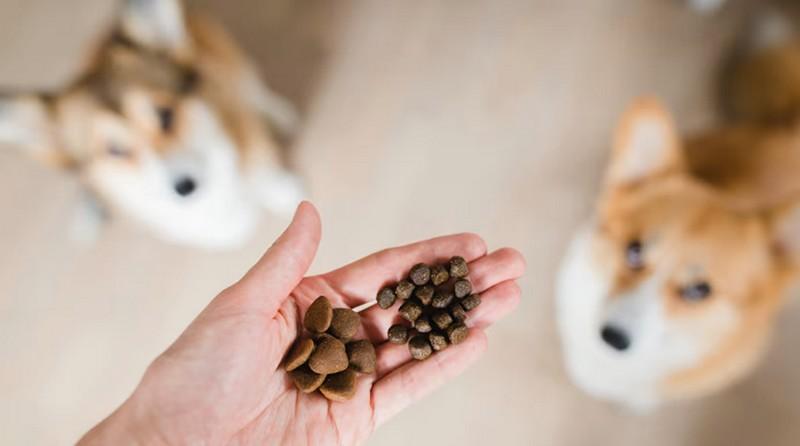 Market Information
Market Information
9+ MIN
09/02/2022
Global Pet Food Market and Trends
The global pet food market has gained remarkable momentum, especially with the Covid 19 pandemic. It was perhaps one of the few sectors that the pandemic positively affected. According to the Pet Food Market report prepared by Fortune Business Insights and revealing the 2021-2028 projection; the global pet food market size was USD 93.94 billion in 2020. The Covid 19 pandemic had negative impact on the supply chain of the pet food industry, due to disruption in production and logistics. However, with pet products manufacturers' continuous efforts to ensure that food supplies for pet animals don't get disrupted and high demand for dog & cat food among pet owners, have led to rise in the value of global market by 3.50% in 2020 compared to the average year-on-year growth during 2017-2019. The market is projected to grow from USD 97.47 billion in 2021 to USD 136.82 billion by 2028, showing a CAGR of 4.96% during the forecast period (2021-2028). Allied Market Research also supports growth expectations in its Pet Food Market report covering the 2021-2030 period. According to the Allied Market Research report, the global pet food market size was valued at $87,27 billion in 2020, and is projected to reach $133,4 billion by 2030, registering a CAGR of 4.6% from 2021 to 2030. As people have been working from home during the lockdown, many used this as an opportunity to get a family pet. Various studies have indicated that people who have pets suffer less with problems such as loneliness and depression due to the companionship that pet ownership brings. During the first couple of months of 2020, breeders and rescue centers reported a boom in enquiries from people looking for pets. According to the report published by Mars Petcare, a leading pet (dog & cat) food manufacturer, the combined sales of cat and dog treats grew by 6.5% in the 12 weeks between February and May 2020. PRODUCT SALES INCREASED DURING COVID-19 PANDEMIC During the initial phase of the pandemic outbreak, supply chain disruptions were observed in the global dog & cat food market. These disruptions in the supply chain occurred due to a shortage in raw materials, workers, and restrictions on transport. However, the operations were back to normal on the lifting of lockdown. Additionally, higher pet adoption, rising demand for premium dog & cat food, and change in strategies by pet animal food manufacturers have positively impacted the global sales of dog & cat food. Also, pet owners have stocked up on dog & cat food during lockdown which caused a short-term boom in sales. LATEST TRENDS IN PET FOOD MARKET According to the Fortune Business Insights report; the concept of personalized food products for pets is becoming widespread across the developed markets, and is expected to become popular across the developing markets in the forthcoming years. Personalization of food products for pet animals has a lot of potential to grow significantly as the pet owners are becoming increasingly conscious about the food they are feeding to their pets. Pet owners need transparency about the ingredients used in the preparation of pet animal food products. This offers a huge growth opportunity to brands or companies that offer specially formulated and customized food products for pet animals. Furthermore, customized food products hold a lot of potential because some of them are efficient in addressing particular pet conditions such as obesity, dry skin, and others. INCREASING PET OWNERSHIP SUPPORTS GROWTH The increasing rate of pet ownership worldwide, especially across the developing regions is anticipated to be one of the primary drivers of the market. According to the Fortune Business Insights report; pet humanization is encouraging the pet owners to opt for nutritious and quality food for their pets, further boosting the market's growth. Additionally, the rising per capita income of the consumer is motivating them to spend on healthy and organic food products for pet animals to aid their health. Moreover, easy availability of products with different price ranges is a growth-promoting factor for the global market. INCREASING INNOVATION BY PET FOOD MANUFACTURERS POSITIVELY INFLUENCING MARKET The key global market players are focusing on the launch of a variety of food products for pets to address the needs of different types of animals belonging to different age groups. This is projected to drive the global pet food market growth. In recent years, companies such as The J.M. Smucker, Nestle, and Mars Inc. launched premium food products to grab the consumers' attention and address the growing pets' needs. For instance, In November 2020, Nestle Purina launched pet animal food that builds on alternative proteins to make better use of the planet's resources. The range includes insects as well as plant protein from fava beans and millet. Similarly, in 2018, Nestle Purina Petcare launched 'Supercoat', a premium range of dog food in India. These market players are tapping into the markets with higher potential in countries such as China, Argentina, and India to increase their revenue. GROWTH RESTRAINING FACTORS According to the Fortune Business Insights report, stringent regulations associated with pet food are one of the factors that obstruct market growth. Pet (dog & cat) food comes under the most highly regulated food products, especially across the western markets. In the developed markets, pet animal foods are examined stringently at every stage, beginning from the ingredients utilized in the food preparation to their sales, and marketing. The high stringency associated with commercialization can be a major restraining factor for the growth of the pet animal food market. Moreover, lower acceptance for premium or high-priced dog & cat food across some developing markets can also be an obstacle for the growth of the market. DOGS TO BE LEADING REVENUE CONTRIBUTORS IN MARKET On the basis of animal type, the global pet food market is segregated into dogs, cats, and others. According to the Fortune Business Insights report, the adoption of dogs as pets is significantly higher across the globe which is a major reason behind the dominance of this animal in the global market. The humanization of animals has led to the adoption of more dogs and cats across the globe. High expenditure associated with the maintenance and well-being of dogs is driving the market for natural and higher-quality dog food. The launch of dog treats and nutrition-rich food is another significant reason contributing to the growth of the segment. In the forthcoming years, cat ownership is expected to increase across the globe at a crucial pace as they are low-maintenance animals and are very much human-friendly. According to the Allied Market Research report, dogs segment is expected to grow at highest CAGR of 4.7% during the 2021-2030 forecast period. DRY PET FOOD IS THE MOST PREFERRED By form analysis, the market is segmented into dry form, wet form, and snacks & treats. According to the report, dry form is the most preferred dog & cat food option by the owners. This can be attributed to the fact that dry form products offer higher convenience and have a higher shelf-life as compared to wet food. For dogs, dry food is the most favored option as it is cheap and hence affordable for many dog owners. Moreover, dry pet food, due to their firm texture, aids the dental health of pets along with maintaining their dental hygiene. According to the Allied Market Research report, dry pet food segment is expected to grow at highest CAGR of 5.3% during the 2021-2030 forecast period. Snacks & treats segment is emerging as an exotic product option for various pets due to their delicious taste and higher quality. This segment is expected to grow significantly in the forthcoming years owing to the active participation of market players in launching a variety of multipurpose and healthy snacks and treats options for dogs, cats, and other pets. INCREASING INTEREST IN ONLINE RETAIL CHANNELS According to the Fortune Business Insights report, supermarkets/hypermarkets and other mass merchandisers are projected to hold the dominant share in global pet food sales. The reason behind this dominance can be attributed to the high consumer preference for buying products from large retail stores, where they are offered an abundance of choices in terms of brands and prices. Attractive shelf-arrangements in specialty dog & cat food retail shops, coupled with the higher availability of exotic, custom-designed, and premium food products for pet animals within these stores are expected to further boost the growth of the segment. According to the Allied Market Research report, specialized pet shops segment is expected to grow at highest CAGR of 5.1% during the 2021-2030 forecast period. Also, the sale of food products of pet animals through online channels is anticipated to intensify globally in the upcoming years attributed to the increasing inclination of millennials towards online purchasing. High convenience offered by the online channels such as doorstep delivery along with the rising collaboration of industry giants with retail e-commerce players are expected to further fuel the segment's growth. THE STATUS OF REGIONS IN PET FOOD MARKET North America currently holds the majority of pet food market share in the global market and the region is predicted to lead the market throughout the forecast period. According to the Fortune Business Insights report, high adoption of pets in the U.S. households is one of the significant reasons for the dominance of the region. According to a survey conducted by the American Pet Products Association (APPA), about 85 million U.S. households, which constitute approximately 67% of the total households present in the U.S., own a pet. The positive attitude of North American consumers towards pet humanization and its wide adoption is encouraging the market growth of nutritious food products for pet animals. According to the Allied Market Research report, North America dominates the market and is expected to grow at highest CAGR of 5.0% during the 2021-2030 forecast period. High spending on sustainable and safe pet animal food due to humanization trends drives the growth rate of the European market. In addition, pet owners in Europe demand for more transparency in pet animal food product ingredients. The U.K. is the largest pet animal food market in Europe; and is followed by Germany and France. According to Mars Petcare State of the Pet Nation, 72 percent of U.K. pet owners consider themselves as pet parents. Furthermore, the tendency of U.K. pet owners to buy premium and natural pet animal food products also drives the high utilization of pet animal food. Asia Pacific is expected to be the fastest-growing region in the global market, followed by South America. Economies such as Japan, Australia, and China are the major contributors to revenue generation across the region. Japan is one of the leading importers of prepared dog and cat food across the world, however, the pet animal food market in the country is showcasing sluggish growth. The market in China and India is expected to rise significantly during the forecast period due to the increasing consumer expenditure on food products for pet animals across these countries, coupled with the increasing investment by the global market players within these economies. Brazil is the second largest pet (dog & cat) food market in the world after the United States. The dominance of Brazil in South America pet animal food market is due to high pet ownership, growing focus on pet health, and high spending on natural, high-quality pet animal foods. Additionally, Brazil has the most diverse pet population in the world; hence, along with dogs and cats, small families, childless couples, and singles living in apartments prefer birds and fish as pets. The market in the Middle East & Africa is driven by rising adoption of companion animals and higher focus on quality products. The growing middle-class population in Africa also supports the growth of the region. Turkey is a key dog & cat food market in the region, and its sales are driven by high demand in local and foreign markets. Moreover, the Turkish dog & cat food market is dominated by local pet animal food manufacturers. KEY INDUSTRY PLAYERS According to the Fortune Business Insights report, the pet food market is consolidated with five major players holding more than 60% of the global market share. These market players, namely Nestle Purina Petcare, Colgate-Palmolive, and The J.M. Smucker Company, are making rigorous efforts to increase their market share and establish their dominance in the global market. Mars Incorporated holds the majority share in the global, as well as in several other regional markets. The company has adopted strategies such as innovative product launch, brand strengthening, mergers & acquisitions, and online distribution of its products to increase its customer base and lead the global market. In the past years, the company has acquired a number of reputed brands such as Natura, Eukanuba, and others. Moreover, it has actively involved itself in online retail sales by collaborating with e-commerce retail giants such as Alibaba Group. By Derya Yıldız - Feed Additive
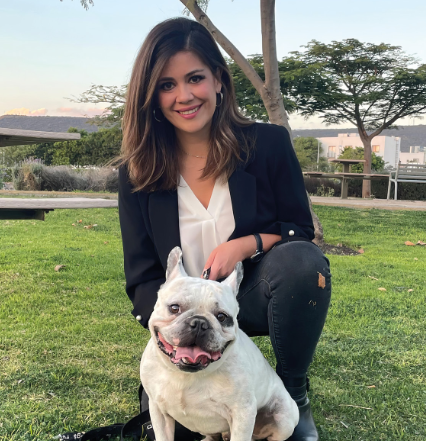 Interviews
Interviews
8+ MIN
08/02/2022
The Interview - Daniela Moreno
Dear Daniela, for us it is a great honor that you have granted us this interview. Could you give us a brief personal introduction? Currently, I am the Director of R&D for Latin America in the dry food and treats segments at Mars Pet Nutrition and responsible for our regional pet research center. I have more than 15 years in the pet food industry in various roles, in the areas of research and development, innovation, consumer analysis and marketing for the brands of Pet Nutrition Latin America, among which PEDIGREE® and Whiskas® stand out. I am an engineer in Food Industries from the Tecnológico de Monterrey and I have a diploma in Innovation and a certification in Business Coaching. I am fortunate to work in a very interesting category and in an incredible company, with vision and values that inspire me, because I contribute to improving the lives of pets and families, since I firmly believe that they make our lives better. I live this every day with Lucho, my own French bulldog. 1) Being Mars Petcare a family business in the field of Pet Food manufacturers, with long-term investment projects, we would like to take the opportunity to consult you, how do you think the Pet Food market will look in a few years? I believe that the relationship between pet parents will become closer and closer and in the coming years the concept of 'value for money' will continue to gain relevance. Companies must maintain diversity in our product portfolio, meeting the different needs of customers and their pets, while adapting to new shopping trends with innovative proposals that serve various types of consumers. A clear example of the changes in the market for the coming years is the vision of the new generations who are choosing to incorporate pets as one more member of their family, as well as looking for healthier alternatives according to their lifestyle. Another great opportunity is in the segment of cats in Mexico that grows above the category of dogs, because the pace of life and the spaces available to live in cities make it much easier to seek the company of a cat. According to the Pet Ownership Survey 2020, the presence of cats in homes reached 13 million vs. only 6 million in 2017. For all these reasons, we have a very positive view of the performance of the market, and our focus at Mars is to know in depth those responsible for pets, translate their needs into products that they, as well as their dogs and cats, love, always doing the right thing for our customers, consumers and their pets. 2) Regarding the growth of the market in your country of residence, Mexico, how much do you think the demand for Pet Food will continue to grow? What kind of food do you think will prevail? What are the current trends that could last over time? Mars Petcare Mexico's pet food business is the fourth most important for Mars Petcare globally, which continues to represent a scenario of great opportunities. In our country, the pet food category grew an average of 10% each year prior to the contingency. However, the market accelerated as more pets entered our homes. At Mars we are being very cautious recognizing the changes in the environment, but we believe that the category will continue to rise, closing the year with double-digit growth. One of the most important trends that will continue in the coming years is the relevance of animal welfare. Consumers are looking for more natural foods that offer nutritional balance and help pets lead healthier and happier lives. They understand that carefully processed food can bring great benefits to the health and quality of life of their pets, which translates into a positive impact for the industry. Consumers will continue to search for convenient distribution channels which will continue to cause the growth of digital commerce. We will also see more informed consumers who will seek to know who is behind the manufacture of the products they consume, the causes they support and their contribution to having a more sustainable planet. 3) As Director of R&D Dry and Care & Treats could you tell us if Mars is developing any new products for pets? In this last semester of the year we innovated and evolved our product portfolio in Mexico to reach the different market segments. In this sense, we launched two new varieties of our WHISKAS® brand: WHISKAS® sterilized cats and WHISKAS® protein mix, and we relaunched the complete portfolio of dry PEDIGREE® under the concept of 'Feed the good'. We also seek to satisfy the needs of pet owners interested in taking care of the nutrition of their dogs and cats, with accessible options prepared in accordance with the quality standards that characterize us, with two new brands: CHAMP® and KITEKAT® that provide an optimal balance. of nutrients at a very competitive price within its category. In addition, our PAL® brand renewed its image and strengthened its formula. We also redesigned some dog treats and added new formats and weights. Our innovation agenda for 2022 is ambitious and we are working to offer options for all consumers in our category, always under the endorsement of the Waltham Research Center that scientifically supports all the products we make. You will soon see in the market some of the surprises that we are cooking. 4) How important do you consider packaging to be? Do you think that the type of packaging can help define the choice of a product by the pet parent? As a global company with a diverse portfolio of food and pet care products, we know that packaging plays a very important role. Consumers are looking for a package that not only has an attractive design, but also ensures that the product was kept in optimal condition from the beginning of its manufacturing process until it reached their hands. Another very important factor is that consumers are looking for a product that represents the company's commitment to contribute to a healthier planet through sustainable packaging. That is why at Mars we are taking steps to redesign our packaging portfolio and continue advancing towards our sustainability goals, promoting solid initiatives that reduce and improve our impact on people, the planet and the communities where we operate, in order to fulfill our Purpose: In the world we want tomorrow, the planet is healthy. 5) From the pandemic we saw a growth in online sales. How do you think companies will adapt to this marketing trend? Does Mars consider it favorable? Without a doubt, D-Commerce was the big winner in terms of marketing channel trends as a result of the pandemic: it doubled in size in less than 3 months. We consider this extremely favorable given that we had record sales through this channel and we will continue to search for new spaces, strategic alliances and formats that meet the requirements of this way of doing business. We know that this is not a fad but a trend that is here to stay and that the pandemic has accelerated. Our consumers will continue to adopt this channel as their regular place to shop for years to come. Companies must learn to play in this channel from the way in which products are shown to consumers, to the development of efficient logistics models, forming strategic alliances with the main players of this same channel. 6) Another significant change from confinement is the importance that pets have acquired within the family nucleus and the requirement of pet parents when feeding them. How do you think this benefited the Industry? The impact has been very positive just because of the transformation of the role of pets. They enter fully into the family dynamics. According to the 'Better Cities for Pets' study, one in three pet managers surveyed added a pet to his family during the pandemic. 86% mentioned companionship as the main benefit and 78% said they reduce their stress or anxiety level thanks to them. Another important indicator of the relevance that they have taken is the increase in adoptions in shelters. Through our Pedigree Adóptame® web app, and in conjunction with the shelters that make up the program, we saw a greater rapprochement between people and shelters. We have achieved more than 1000 adoptions from April to date. This set of situations impacts because there are more pets to attend to and the supply of services grows. More specialized and diverse services will be needed such as: aesthetics, hotels for pets, toy libraries, accessories and others. That necessarily opens up opportunities for the entire industry and not just for the food industry. In our business, consumers are more aware, they look for proposals that are not only innovative, but also healthy, which promotes market growth. 7) Being Mars Petcare a company committed to the environment, what are the challenges that it intends to face in order to generate more sustainable processes? We know our responsibility to contribute to a healthy planet by being, precisely, a global company. We want to continue leading the category, grow above it, be much more profitable, leverage innovation and advance in meeting the goals that we have established in our One Generation Sustainability Plan. In this plan, we address key areas of the United Nations Sustainable Development Goals and include ambitious goals based on science and our Five Principles. We have tackled various environmental problems with different strategies. We choose materials that are easier to degrade and plan to increasingly reduce our carbon footprint from recipes with more sustainable sources of raw material. Likewise, we try to guide consumers about the recycling capabilities of our packaging. Some of our global goals for 2025, seek that 100% of our plastic packaging is reusable, recyclable or compostable, reduce 25% the use of virgin plastic, use 30% of recycled content in plastic packaging and maintain the elimination of PVC in our supply chain. All this without counting the other programs in other branches of Mars such as 'Por Amor al Cacao', 'Tejer el Futuro', the restoration of reefs with Oceanus A.C. or the program "Charco Bendito". 8) Anything else you want to add? At Mars we pride ourselves on being a family business that thinks long-term, the future of our people and the planet. We believe that the world we want tomorrow begins with the way we do business today. Our priority is to meet the nutritional requirements of companion animals by offering innovative products that help them have a longer and healthier life, so we will continue working based on our Five Principles to improve the well-being of families, their pets and contribute so that the keeping of companion animals is increasingly responsible, sustainable and simple to crystallize our vision of making a Better World for Pets. Fuente: All Pet Food
 Vegetable Origin
Vegetable Origin
5+ MIN
07/02/2022
Alternative Proteins, Functional Foods Driving Pet Food Ingredient Trends
To learn more about current pet food ingredient trends, we asked Jorge Martinez Carrillo, President of Pet Solutions at ADM, to share some insights and discuss how manufacturers can respond to these trends while providing pets with the best possible nutrition. With the humanization of pets driving many of the emerging trends in pet food, 'pet food manufacturers are therefore challenged to understand how trends in human nutrition may be affecting pets,' Carrillo said, 'and how they can adapt them in a nutritionally safe and beneficial way.' All natural, sustainable ingredients In pursuit of optimal nutrition for their pets, pet owners are looking closely at ingredients — not just what they are, but where they come from, how they're produced, and how they support pet health and wellness. 'Our research finds that 30% of global pet owners spent a significant amount of time researching the best food options in the last year,' said Carrillo. One of the things they're checking for is that the food contains only natural ingredients, nothing artificial. Carrillo pointed to The Future of Pet Food Market Report 2021 from Mintel, which reported a 41% increase in 'all natural' pet foods launched globally. And as concerns about sustainability rise, more pet owners will be looking into the sustainability aspects of the pet food they purchase, including its environmental footprint and the treatment of animals used in the recipes. 'During the next year, we anticipate increasing consumer demand for ingredients that are traceable and sustainable,' Carrillo said. 'Awareness and interest in ethical and environmental claims are set to grow, and brands that are transparent about their sourcing will be more likely to win with conscientious consumers.' More protein options - Plant-based proteins Just as many consumers have increased their intake of plant-based foods, more than half of pet owners are showing interest in feeding more plant-based proteins to their pets. For pet owners who wish to completely eliminate animal meats, some pet food companies have already introduced meatless pet foods that include plant-based proteins and/or eggs — Freshpet, Natural Balance, and Wild Earth, to name a few. But many pet owners are simply seeking out pet foods that incorporate more beneficial fruits, vegetables, and other plant-based ingredients. 'There is growing interest in flexitarian-style, plant-forward pet foods that feature alternative proteins like beans, pulses, and ancient grains,' Carrillo said. Ancient grains Grain-free diets haven't gone out of style, but 'grain-free foods do not offer additional health benefits over a food that contains traditional or ancient grains,' Carrillo noted. As pet owners become more aware of this, they may be exploring more grain-inclusive diets for their animals. Ancient grains, Carrillo said, 'deliver protein, starch, and dietary fiber. Additionally, traditional grains like corn and wheat are as biologically appropriate as other popular sources of carbohydrates in today's pet foods.' Insect-based proteins Insect protein could become more prevalent in the pet industry as consumers seek a more sustainable lifestyle for themselves and their pets. While there may be some who are squeamish about this idea, it looks like many pet owners are willing to give it a try — 43% are open to the idea of feeding insect protein to their pets. And the opportunity for pet food manufacturers to begin researching and formulating pet foods with insect protein could be on the horizon, as the Association of American Feed Control Officials (AAFCO) tentatively approved the use of dried black soldier fly larvae in adult dog food last year. Functional ingredients and superfoods ADM is also seeing 'greater demand for science-backed, real-food solutions that support proactive and holistic health management,' Carrillo said. This may take the form of foods that address health challenges like obesity, allergies, and aging or boost overall immune, digestive, and oral health. Personalization trends may also drive up demand for pet food that targets the needs of specific age groups, breeds, and sizes. These formulas rely on functional ingredients that support healthy systems. For example, 'botanical extracts may contain phytonutrients that help increase the integrity and maintenance of the intestinal tract or natural antioxidants that can support immune function,' Carrillo explained. 'Probiotics, prebiotics, and postbiotics are increasingly common to manage the gut microbiome and support overall health.' Providing safe, healthy diets with novel ingredients The first step toward bringing new ingredients into the mix is extensive research. 'It's important to understand that pets need nutrients, not ingredients,' Carrillo noted. 'Before a novel ingredient makes its way into pet foods or treats, it should be validated through research to ensure it is acceptable for pets and will nutritionally support a balanced diet.' That's why ADM partnered with University of Illinois researchers to further study plant- and yeast-based proteins and their applications in pet food. They concluded that pea, potato, faba bean, and soy protein concentrates, as well as dried yeast concentrates, are quality sources of proteins and essential amino acids. Combined with the right ingredients, these protein concentrates can help meet the nutritional requirements of dogs and cats while providing new and alternative protein sources. Veterinary recommendations are also a major influencer of how consumers feel about feeding certain ingredients to their pets and can help clear up misunderstandings. Carrillo referenced ADM's research on consumers' longstanding avoidance of soy in pet food. After exposure to veterinary research about the unlikelihood of canine and feline soy allergies, 28% of pet owners said they'd consider feeding soy to their pets in the future. Younger generations were more likely to have this changed opinion about soy. Of course, when working with new ingredients, pet food manufacturers also have to ensure they're complying with federal regulations and labeling requirements and selecting suppliers that reliably provide safe, quality ingredients. Pet owners often chase after trends because they're looking to give their pets longer, healthier lives. So it's not worth trying out new ingredients if they could potentially do more harm than good. 'No matter the ingredient,' Carrillo concluded, 'safe and healthy pet food is developed as a complete formulation to meet the animal's optimal nutrient requirements for all life stages, from puppy or kitten to senior.' by Krystle Morrison- Food Industry Executive
 Formulation
Formulation
2+ MIN
04/02/2022
Two companies join forces to help extend the lives of dogs
With an investment of over $25 million pesos and exhaustive research and scientific development work applied to canine medicine, Juvenia Nutrition was created, a new dry pet food for adult dogs produced by Grupo Molino Chacabuco, with a powerful antioxidant core based on of resveratrol, developed exclusively and in the process of being patented by Microsules. The Argentine laboratory with more than 53 years of experience in the pharmaceutical sector managed to transfer to veterinary nutrition, an antiaging substance of natural origin and widely used in human medicine. The result: a functional food that nourishes and incorporates a powerful antioxidant into the body, that helps reduce muscle, cognitive and bone deterioration in canines as a result of aging. This is in line with the growing trend of pets in Argentine households (three out of four households have at least one canine companion); and responsible ownership entails paying special attention to their diet; especially in the case of adults who require special care, and it's there where those pet food that can improve their quality of life are a priority For his part, Mr. Tomás Crespo Tassara, General Manager of Grupo Molino Chacabuco, was "very proud to be part of this alliance between two Argentine companies that keep investing in technology to achieve quality products that are at the forefront of the demanding quality standards of the Industry." "By adding Juvenia Nutrition, it allows us to reach the consumer with a novel proposal at the most sophisticated level of the pet food market, complementing our portfolio of products with which for more than twenty years we´ve been participating in the intermediate brand segment, being Raza one of the benchmarks in the category, currently exporting to several countries of the region", Crespo Tassara concludes by All Pet food
 Conveying Systems
Conveying Systems
6+ MIN
03/02/2022
Cablevey Conveyors debunking misconceptions about tubular drag conveyors
In the pet food processing industry, walking onto the production floor with conveyor tubes winding this way and that, in and out of machinery can seem to visitors like they have stepped into a Dr. Seuss book or Willy Wonka and the Chocolate Factory movie. For example, at a glance even industry veterans can be challenged to distinguish whether the conveyor tubes they see are screw (augur), pneumatic, vacuum, aeromechanical, tubular drag chain and disc or tubular drag cable and disc, unless they are the plant engineer or maintenance crew. In fact, many specifiers, architects, engineers, and other professionals lack substantial technical or hands-on experience with such conveyors. This knowledge gap can result in extreme consequences when delicate pet food or precise blends must be reliably conveyed but instead, costly product destruction or inaccurate blends occur. Misconceptions about tubular drag cable and disc conveyors will be the focus of this assessment, addressing six widely held viewpoints in the industry. Tubular drag cable conveyors gently move product through a sealed tube using a coated, flexible stainless-steel drag cable pulled through on a loop. Solid circular discs (flights) are attached to the cable, which push the product through the tube without the use of air. These conveyors excel in transporting delicate, precise blends for a wide variety of pet food types in versatile layouts and configurations. Misconception #1: These Conveyors are the Same as a Screw System 'One of the most common misconceptions is that tubular drag cable and screw conveyors are identical, which is far from the case,' says Karl Seidel, marketing director of Cablevey Conveyors, a mechanical conveyor manufacturer that serves the pet food, specialty food, coffee, powder, and nut markets. Screw systems, also known as auger conveyors, typically utilize a helical blade that moves granular materials within a tube. However, augurs can cause product damage and compromise blends. So, the units tend to be an option when material integrity is not critical, such as when conveying food waste. Seidel notes, 'The key difference to look for is that augurs convey material with a helical screw. The transfer speed is directly proportional to the rotation speed of the screw. On the other hand, tubular drag cable conveyors transfer material between two discs pulled by a sealed cable and are designed to protect delicate products and blends.' Misconception #2: Conveyors Are Not Designed to Protect Blends and Mixes When transporting a blend of pet food product or supplement with a conveyor system, maintaining a consistent mix ratio is essential, whether a coarse mix, fine powder, or larger variable-sized amalgams of different weights and shapes. However, conventional conveyor systems are not specifically designed to precisely transport pet food blends without changing the mix ratio. Various product material weights, sizes, and shapes can shift and disperse in open systems like bucket conveyors, and vibration can cause the blended product to shift throughout transport. Vacuum and pneumatic systems can cause smaller lightweight particles in a blend to move at different speeds than heavier or larger particulates, resulting in significant blend restructuring when the product reaches its discharge point. In contrast, tubular drag cable conveyors are engineered to maintain precise blend ratios, which can be important to pet food industry professionals such as nutritionists and quality control experts. As an example, according to Seidel, the company's engineers have resolved the issue with a completely enclosed, compartmentalized tubular conveyor system. 'Not unlike an endless succession of train cars, each space between solid circular discs holds a predefined volume of product. Based on the manufacturer's specifications and requirements, engineers can calculate the optimal speed of the system, the most appropriate tube angles, and the proper construction design to guarantee their blended product remains consistent from input to discharge, even at high volumes,' says Seidel. His company has designed, engineered, and serviced enclosed cable and disc tube conveyors for 50 years in over 66 countries. Misconception #3: Conveyors Cannot Carry Moist, Hot, or Frozen Material Tubular drag cable systems like Cablevey's convey pet food materials in a wide variety of forms and states including whole, powdered, pureed, chopped, moist, hot, and frozen with throughput rates up to 80,000 pounds per hour. The systems can convey material with high moisture content when some water is being conveyed along with the product. While the tubular conveyors are constructed of plastic components, the standard units are designed to operate at 180° F (82° C) with a high-temperature option up to 230° F (110° C), so can receive the product from ovens, fryers, or dryers, according to Seidel. Even frozen products can be conveyed, although it is important that the temperature is controlled along the path, so no melting occurs with water freezing later in the system. Misconception #4: Conveyor Footprint and Expansion Limitations in the pet food industry do not consider tubular conveyors because they mistakenly believe that the systems cannot fit within their facility's available space or accommodate its layout, which may include significant inclines or elevation changes. However, this is not the case. Modular systems like tubular drag cable conveyors are an excellent option for complex layouts that could require curves or changes in direction, according to Seidel. 'Tubular conveyors do not have to be installed at 90 degrees and can use angles so can go in between, around, above or below existing equipment or other obstacles. That is important for existing facilities that may not have the flexibility to move something out of the way,' says Seidel. In addition, tubular conveyors are quite space efficient. Seidel notes that to conserve space, the conveyor turnaround and its inlet can stand on end, so it is only one foot across instead of three. If conveyor discharge occurs best using gravity, tubing can be run through walls and discharge out of the building roof, which saves interior space. Misconception #5: Cleaning Requires Dismantling and Extended Downtime Between product changeovers, many traditional conveyor systems must be disassembled, cleaned, or soaked, and then reassembled – a labor and time-intensive process. However, this is not necessary for tubular conveyors. With tubular conveyors dry, wet, and in-line cleaning options are available, according to Clint Hudson, Cablevey Conveyors Engineering Manager. Among dry options, brush boxes and air-knives can clean the cable. Brushes and wipers can wash the tubes. To sanitize, a sponge soaked in sanitizer can be used without getting the system fully wet. For the most thorough cleansing, the cable conveyor's wet cleaning process internally washes the tube in several steps, starting with a water rinse followed by a foaming agent, a sanitizing rinse, and a final water rinse. Once the system is thoroughly flushed out, drying is achieved by attaching urethane wipers to the tubular conveyor's discs, which 'act like a squeegee' to remove any residual water. Misconception #6: Conveyors are Indoor Installation Only It is a misconception that tubular conveyors are only installed indoors. In fact, it is common to see portions of equipment extending outdoors. This may occur when conveying product from outside to inside such as when unloading raw material from a truck or railcar or loading finished product into similar transport. Materials may also travel from a feed mill to a production or packaging room which may be ten feet or even one hundred feet away. According to Hudson, when some of the equipment is utilized outdoors, and when the company is moving a moist product, it can be helpful to wrap the tubes in heat tape to prevent moisture from condensing or freezing in the tubes. The conveyor manufacturer can also provide a range of accommodations to account for the effects of wind, dust, rain, insects, and direct sunlight. While first impressions of tubular drag cable and disc conveyors can evoke images of Dr. Seuss or Willy Wonka's chocolate factory, the equipment has been carefully designed and engineered for industrial performance, reliably conveying delicate pet food products and blends in a variety of conditions. With an understanding of the true potential of these conveyors, industry professionals will be well-positioned to take advantage of the systems' abilities to decrease downtime and increase quality production. Source: Cablevey Conveyors
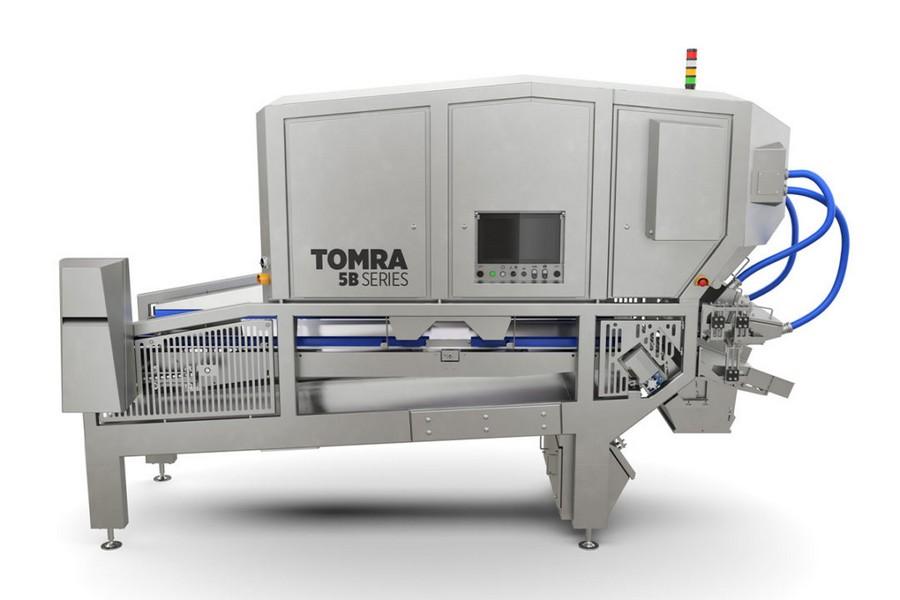 Grinding
Grinding
2+ MIN
02/02/2022
TOMRA food safety solutions for rendered meals, pet food products
All these food safety factors have a direct impact on the cost and payoff of raw materials — including commonly used pet food proteins like beef, poultry and rendered meals — and, subsequently, the reputation of brands. Strict food safety standards set by the Food Safety Modernization Act (FSMA) make it imperative for pet food brands and ingredient suppliers to safeguard their products; employing modern processing and food safety technologies is one way to go about this. To this end, TOMRA Food has highlighted which of its systems help produce safe rendered ingredients for pet food and finished pet food products. According to TOMRA, optical sorting offers renderers and pet food producers a leg up on conventional inspection methods, such as metal detection and x-ray systems. For example, the TOMRA 5C sorter can identify and reject foreign material in rendered meals before it reaches the pet food manufacturer. This 'final control' approach for rendered meals can also regulate ash content and enhance the final quality of a protein meal, the company said. For dry pet food manufacturing, the TOMRA Nimbus system can be used to identify foreign material and detect cross-contamination. The system's specific pet food software can store recipes, then use those set parameters to measure each piece of kibble and determine if it is a part of the right batch. The TOMRA 5B is best suited for pet treat and wet pet food processing. This system can prevent foreign materials from being included in final pet treat packaging, and also measures for consistent size, form and color of each treat. In wet pet food, the TOMRA 5B can be set up for in-bound ingredients to check for foreign materials in frozen protein ingredients. TOMRA suggests placing this system between the breaker or grinder and the mixer to prevent foreign materials from entering the mixer. The TOMRA 5B can identify stones, hard and soft plastics, metal, wood, glass, rubber and bone, and eject unwanted materials before the protein moves downstream. Aside from helping manufacturers meet rigorous food safety standards and protect their reputations, TOMRA noted its optical sorting equipment can also benefit sustainability and profitability for rendered protein suppliers and pet food manufacturers. The company's sorting solutions can protect value-added products from being wasted by identifying out-of-spec attributes further upstream, which protects the processor's investment in its ingredients, processes and environmental impact. 'Non-conformances with our customers have reduced dramatically, and we see very, very little waste or foreign bodies in our material,' said Craig Harrison, site manager for TOMRA. 'Our current customers have seen the difference in the finished product and there's lots of interest from additional customers enquiring about buying our material.' By Jordan Tyler - Pet Food Processing
 Palatants
Palatants
3+ MIN
01/02/2022
Cat eating enjoyment informs preference of food components
Cat pet parents, for example, note their cats are inclined to lick the gravy and refuse the chunks in chunks and gravy meals, which suggests to pet parents the chunks are less enjoyable. Research at AFB International includes creative methods to measure palatability preference in cats and dogs for various food types, including those with multiple shapes and textures. Eating enjoyment is a dimension of palatability and can be interpreted by the pet's interaction with the food, and/or by what pet parents perceive as they watch their pet eat. In a recent study, we measured multiple responses during cats' interactions with food and summarized them as Initial Attraction (First Approached, First Tasted, Duration of First Eating Bout) and Sustained Interest (Consumption, Uptake, Food Focus) to evaluate how individual food components of a chunks and gravy meal influence eating enjoyment. We found that cats indeed preferred gravy to other components of the meal, which supports many pet parent perceptions. Additionally, chunks were avoided in favor of anything with gravy, and when chunks alone were offered versus the whole chunks and gravy meal cats primarily licked the gravy from the chunks and gravy meal. STUDY 1 Hypotheses: a) gravy alone would be preferred over chunks and gravy and over chunks alone, and b) chunks and gravy would be preferred over chunks alone. Supported. Figure 1. Components of a highly palatable commercial wet food presented in two-bowl trials. Table 1. Results for the most enjoyed food component by cats in 2-bowl trials. Anything with gravy was preferred by cats. Based on the outcome of this study, we again measured cats' interactions with foods (i.e., Initial Attraction and Sustained Interest) evaluating whether they prefer to lick rather than chew their meals. To do this we blended chunks and gravy meals in a food processor to achieve a homogenous, lick-able whole meal and offered it versus the original form of food. Specific responses within Sustained Interest indicated that the blended form of the meal was consumed more than the original form, likely because it was more efficient to consume. However, collectively, the additional measures suggested that cats enjoyed the original forms more than the blended forms. STUDY 2 Hypothesis: Cats prefer to lick rather than chew their chunks and gravy meals. Not supported. Figure 2. Blended and original (unblended) forms of four commercial products presented in two-bowl trials. Table 2. Results for Eating Enjoyment in cats of blended and original forms of wet foods in two-bowl trials. In general, original forms were enjoyed more than blended forms. Measures of eating enjoyment offer additional insight to the feeding experience of cats and dogs by describing how they are eating not just how much they eat. Here, Initial Attraction and Sustained Interest demonstrated that cats enjoy a specific component of a whole meal over other components. Unexpectedly these enjoyment measures also revealed more about our cats' eating experience: licking, although efficient, is not the primary driver of enjoyment of a wet meal. Finally, we continuously seek to gain a better understanding of eating enjoyment as a dimension of palatability that helps to guide product improvements that ultimately provide a more satisfying eating experience for cats and their people. These methods can be applied to investigate palatability of many food matrices, such as heterogenous wet and dry foods, as well as their corresponding size, form, and texture. By: AFB International - Research and Development
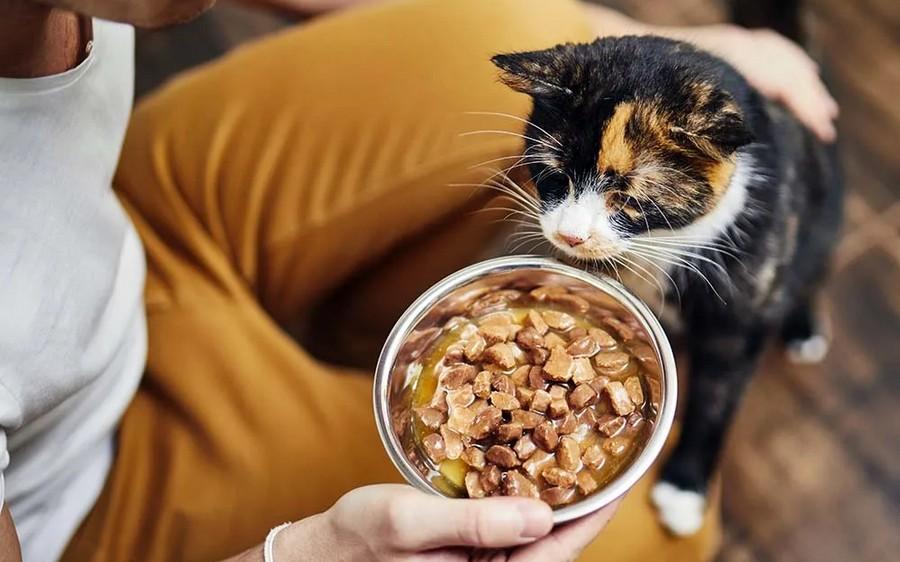 Palatants
Palatants
4+ MIN
31/01/2022
Finally, the Reason Why Your Cat Is a Picky Eater
Ever wondered why your senior cat turns their nose up at a perfectly good meal from time to time? You checked the expiration, inspected it for unwelcome bacteria, and still, your cat would rather turn their nose up than return to their regularly scheduled programing. Well, insights from a new Waltham Petcare Science Institute study may have uncovered the key to your cat's sudden aversion to mealtime, and it could be as simple as warming their food. Just like we wouldn't regularly pick a gaspacho over a warm lentil soup in the winter, our cats may be craving the same comfort of hot — or at least warm — meals. My research team at Waltham wanted to find out if the temperature of wet food could make it more alluring to senior cats, and if so, understand why. As they age, the sensitivity of senses like taste and smell (among others) are thought to decline. Both senses are important drivers of appetite, which is why it can be challenging to encourage older cats to eat the food they need to help maintain their body weight. Warm Cat Food for the Win Warming the food made a significant difference to the amount of food that the cats ate. In the study, published in the Journal of Veterinary Behavior, my team offered the cats (all over seven years old) the same wet food, but at different temperatures. The chilly option was 6⁰C (43⁰F), which is similar to the food that has been kept in a fridge. The second option was served at 21⁰C (70⁰F) to reflect room temperature and food that is usually served from a pouch stored in a cupboard. The final offering was at 37⁰C (98⁰F), like the body temperature of their prey. The cats' top preference was the food at 37⁰C. Their second preference was at room temperature, and they ate the least amount of food offered when at 6⁰C. Complete and balanced cat food contains all the nutrients in the correct amounts to help maintain their health. That means ensuring that older cats tuck into and finish their dinner is an important part of supporting their needs as they age. You know what they say about senior citizens retiring to Florida for the balmy weather. Well, now you can help make mealtime easier for your older, fussy cat by offering them the same warmth they (sometimes) offer you. Tiny cocktail umbrella optional. Tips to Encourage Eating Avoid serving cat food straight from the fridge. Purchasing pet food in cans can offer the best value. However, when caring for a cat, each meal will only be a portion of the can, requiring the open tin to be stored in the fridge for freshness. To avoid plating-up a chilly offering, put the meal portion in a bowl and leave at room temperature until the food has warmed before giving to your cat. Try warming the food above room temperature. For the tastiest meal, try warming the food. You can place the food container in a pan of warm water, or gently heat it up in a microwave using a microwave-safe container. Make sure the food is only warm to touch, and not hot, which could harm your cat. Why Senior Cats Prefer Warm Food There are several factors influencing the amount of food that cats eat: aroma, taste, texture, appearance, and composition. We used the same product for the study, which means the food's appearance and composition didn't change. We also also measured the consistency of the gravy in the food and found no change to it when heated. So what could be driving the differences? There may be two different areas that could come together to drive the preference we found in the cats — evolution and food chemistry. Part of the study was to help understand what changes in the food and its aroma as it is heated. We found, for example, that more sulphur-containing compounds were released at 37⁰C. From our previous studies in food chemistry, and from the results published by other academics, we know that these compounds are extremely important in meat flavor — so they could make the difference to the pets. The other area that may be important links to cats' natural and wild predatory instincts. They may have evolved to prefer food at body temperature, which could be an indicator to them that the prey is fresh or has been recently caught. by SCOTT MCGRANE, DVM - The wildest
 Market Information
Market Information
1+ MIN
28/01/2022
Global pet food production rose 8.2% in 2021 impacted by increase in demand
Animal health company Alltech concluded that pet food production reached nearly 34.17 million metric tons in 2021, with Asia-Pacific showing the highest growth. According to the 2022 Alltech Agri-Food Outlook, the region saw an increase of 17.1% in pet food production from 3.2 million metric tons in 2020 to 3.8 last year. As recently reported by GlobalPETS, the pet food industry in Central Asia showed optimism after forecasting that the regional market sales are expected to double in the near future. The biggest market in the segment is Europe, which in 2021 produced 11.6 million metric tons (+2.7%). The US saw an increase in 12.7% to 10.6 million metrics. The production in Latin American countries grew 7.7%, from 6.6 million metric tons in 2020 to 7.2 in 2021. In the African continent, the manufacture of pet food passed from 444.000 metric tons in 2020 to 454.000 last year. The constant increase in demand for pet food products is behind the good numbers and meant a boost to the global industry. 'While some regions remained flat, there were no reported decreases in any region around the world,' concludes the study. Source: GlobalPETS
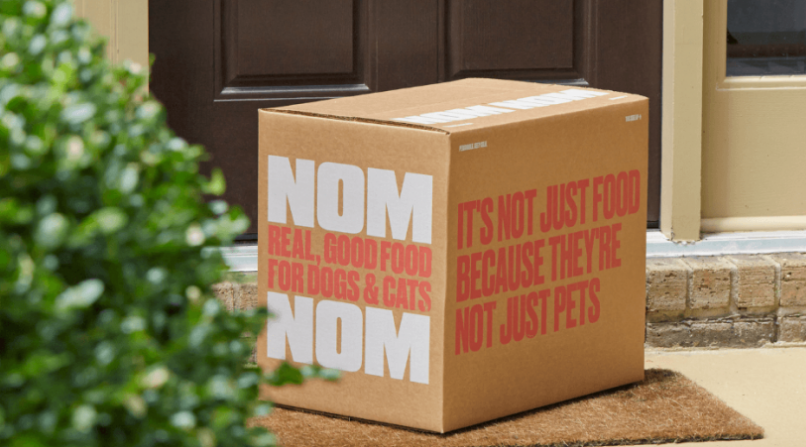 Market Information
Market Information
1+ MIN
26/01/2022
Royal Canin acquires fresh pet food producer Nom Nom
Royal Canin believes that the acquisition of the 'fast-growing' D2C fresh pet food company will bring synergies to keep supporting the brand's success in the dog and cat category, while complementing the existing portfolio of the multinational. Nom Nom will act as an independent brand within the Royal Canin division, with its own positioning strategies. Although the terms of the deal haven't been disclosed, Bloomberg reported that the acquisition is worth $1 billion (€800M). Nom Nom was born in 2015 with the commitment to 'improve the health of dogs and cats everywhere' . The company states that they work with the highest quality proteins and vegetables from trusted U.S. growers and suppliers. In 2018, it invested $1.7 million (€1.5M) in a new production facility in Davison County (Tennessee) to serve East Coast customers better. According to the Growjo database, NomNom's estimated annual revenue is $29.1 million (€27.5M). But considering the estimated amount of the acquisition, their official revenue is likely much higher. Source: GlobalPETS
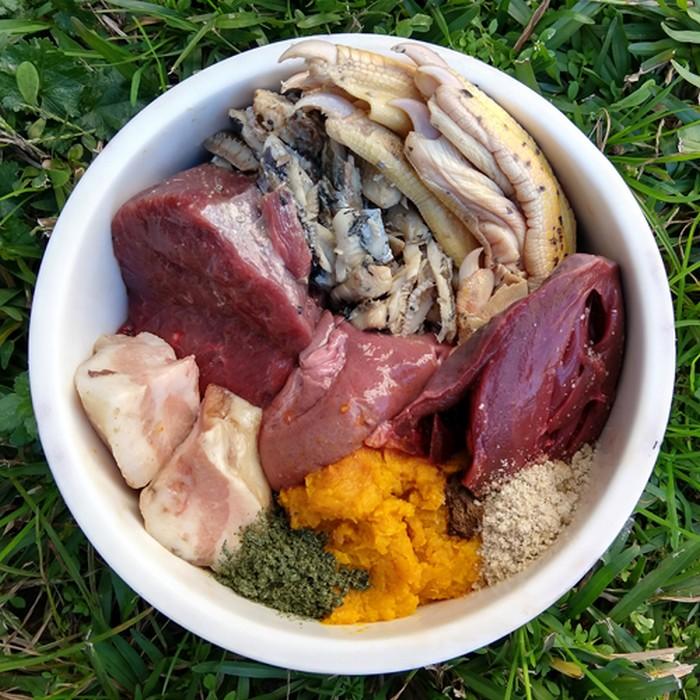 Animal Origin
Animal Origin
3+ MIN
24/01/2022
Raw diets: Pet owners frequently underestimate human health risks
It has been well-documented that both commercial raw pet foods and raw meats sold for human consumption have high rates of contamination with dangerous bacteria, many of which are antibiotic resistant. However, it is our experience that many pet owners are still unaware of human health risks from raw pet foods, including common treats such as pig ears, bully sticks, and most freeze-dried meat treats (like freeze-dried liver treats). There have been numerous incidents that have proven that raw pet products do make people sick and in rare cases have actually caused human deaths. An outbreak of Salmonella linked to pig ear dog treats sickened more than 150 people in the US in 2019. Four infections with E.coli O157:H7, which resulted in one death, were reported in 2017 and several pet owners and a veterinarian were infected with a strain of tuberculosis from their cats that were infected from eating a commercial raw diet in the UK in 2019! These are just a few examples of a bigger problem. Despite these reports and many other scientific publications documenting risks, many pet owners who feed raw diets or treats are unaware of the risks and do not take appropriate safety measures to protect themselves and their families. This lack of awareness or appropriate assessment of risk may be in part because many online sources and proponents of raw-feeding hype potential benefits (typically despite a lack of scientific evidence) while downplaying or ignoring potential risks. A small research study published early last year investigated the food safety knowledge, practices, and perceptions of 174 pet owners who feed raw diets. In that survey, 95% of pet owners were 'very confident' that their handling of their pet's food was safe and 89% did not perceive that they or their family were at risk of food borne-illness. A similarly large percentage (84%) were also confident in their cleaning and sanitizing practices. However, at the same time, the majority of respondents reported they didn't always use safe food handling processes such as thawing raw meat for their pets in the refrigerator or using separate utensils and food prep areas for their pet's food. Other risky practices reported included rinsing raw meat in the sink, not always washing their hands after prepping their pet's food, or not using disinfectants to clean surfaces, utensils, and pet food bowls after food prep or meals. The majority (87%) of the pet owners cited the internet as their main source of information on raw diets; only 8% reported asking a veterinarian for food safety information. Only 12% of pet owners were aware that Campylobacter is a common contaminant of raw meat and only 36% were aware that foodborne illness could be fatal. While this survey only included a small number of pet owners, the results, along with the clinical experience of many veterinarians and Board Certified Veterinary Nutritionist® , suggest that many pet owners who feed raw foods to their pets may underestimate their risk of illness while overestimating their ability to prepare their pet's food in the safest manner to protect their pets and themselves from foodborne pathogens. While we definitely do not recommend feeding raw diets due to their health and safety risks, if you make the choice to feed raw foods or treats to your pet, whether home-prepared or commercial, it is very important to follow proper food safety handling procedures and obtain objective information from reputable sources. by Cailin R. Heinze, VMD, MS, DACVIM (Nutrition)
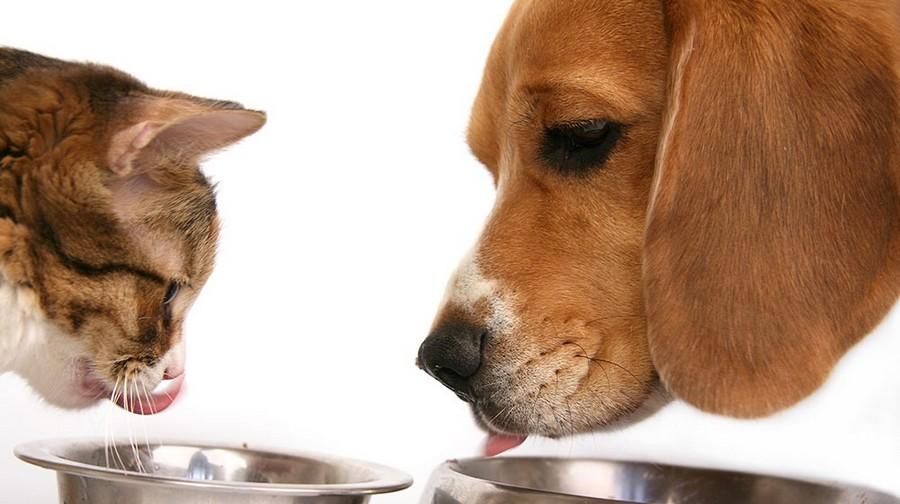 Trends
Trends
3+ MIN
21/01/2022
Petfood: key industry trends to look out for in 2022
What are the major trends in petfood processing and where is the industry heading in 2022? What can we expect to see in products and packaging, and what factors are driving these changes?
Joost Lotgerink Bruinenberg, Sales Manager at JBT FTNON – a major equipment solutions supplier to the petfood industry – here examines some of the key trends that have emerged over the past 12 months and details how these are likely to develop in the next 12.
Petfood, and in particular wet petfood, is an industry that is experiencing rapid growth worldwide at both a local and an international level. But at the same time, there are some significant trends that are likely to shape the future of the industry moving forward.
One such trend is in plant-based meat replacement products. A tendency in human foods as much as petfood, plant-based has emerged as a major business opportunity over the past 12 months, driven both by consumer concerns about the environment as well as the increasing expense of conventional meat. This has led to companies such as JBT increasingly offering plant-based processing solutions for the petfood industry.
At the same time – and again driven by environmental concerns – there is a move away from plastics towards alternative, sustainable packaging options. Likewise, there is widespread movement towards reducing the carbon footprint across a petfood processing line; and JBT FTNON is working closely in partnership with our customers to help achieve their environmental goals. Away from the environment, there has also been a significant trend towards offering irregular chunks in petfood packaging. JBT FTNON is currently development a solution and we expect this to be ready to present to the market in Q1 or Q2 2022.
Of course, this is just one of the developments that JBT FTNON has been developing in order to further improve our petfood systems and meet the evolving demands of processors. Most significantly, JBT FTNON has been working on machine cleanability and ease of maintenance by engineering better access for maintenance and cleaning. These changes mean FTNON equipment is now even easier and more straightforward to clean.
This complements existing JBT FTNON petfood processing solutions, such as the two-color injector for our extrusion system, steam and cooling tunnels adapted to the needs of can and pouch filling alike, and our angular cutting unit which will soon be able to handle irregular chunks. FTNON also recently established an international Petfood Competence Network, which brings together expertise from across the petfood industry to encourage cooperation for the greater good of all companies involved.
And thanks to JBT, FTNON now has a local presence, globally. With petfood as an industry really moving forward and expanding, being able to offer immediate support is invaluable. JBT has vast experience then it comes to the life cycle management of the equipment and helping customers keep operations running with the highest yield. By using the global service network and Augmented Reality remote support (PRoSIGHT™), JBT's customer care team is always near at hand when it matters.
LEARN MORE about JBT FTNON's solutions for petfood
by JBT
All Pet Food
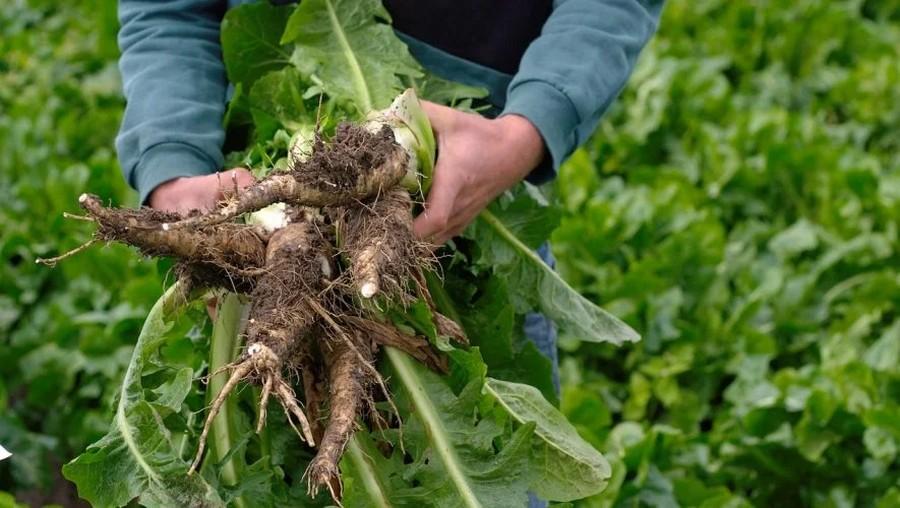 Vegetable Origin
Vegetable Origin
2+ MIN
20/01/2022
BENEO announces multi-million investment program
The first step will see more than €30 million invested. The entire program will ensure a significant capacity increase of more than 40 percent of BENEO's global chicory root fibre production to meet rising customer demand and drive further growth within the market. The work on both production sites is beginning in 2022. Current market trends see a high demand in prebiotic chicory root fibre due to the versatile benefits it offers in product development. Over the past four years, the number of new product launches containing chicory root fibre inulin has grown by 50 percent globally , with the market expected to reach 11.48 billion USD in 2028 . BENEO's latest investment will allow for continued fulfillment of market needs within the food and feed industry, while demonstrating the company's commitment to growing its chicory root fibre business. Christoph Boettger, member of the Executive Board at BENEO comments: 'BENEO's chicory root fibres meet key consumer needs of today and we are convinced that they will continue to play a central role in healthy nutrition in the future. With increased capacity, BENEO continues to offer a secure supply to its customers and partners worldwide.' The chicory root fibres inulin and oligofructose are the only plant-based prebiotics. According to the International Scientific Association for Pro- and Prebiotics (ISAPP), they belong to the very few proven prebiotics. The use of chicory root fibres in product development allows manufacturers to respond to leading consumer trends such as digestive health and immunity, inner well-being, weight management, blood sugar management and bone health. With two production sites in both the Northern and Southern hemispheres, BENEO provides flexibility to customers, ensuring secure supply of prebiotic chicory root fibre around the world. Boettger continues: 'As announced previously, in summer 2022 a second refinery line in Pemuco will already increase the production capacity significantly. But we won't stop there. The recent investment decision will ensure that BENEO's production capacity is further growing. On top of this capacity increase, CO2 emissions are being reduced. This means that the production site in Pemuco will be carbon neutral in a few years. Additionally, the site in Oreye will have reduced the specific energy consumption per ton of product by more than 50 percent by 2030.' Such an achievement is only possible because BENEO can ensure that sustainability resonates in everything it does, with the highest level of energy efficiency being applied to the factory developments. These efforts are contributing to the company's goal of being carbon neutral in 2045. As well as contributing to BENEO's carbon neutral ambitions, the investment will create a number of job opportunities as a result of expanded production facilities. At the Pemuco plant for example, an increase of approximately 15 percent in employees is foreseen over the next few years. by Beneo
 Market Information
Market Information
5+ MIN
18/01/2022
FAMSUN President's New Year Message for 2022
Dear colleagues, friends, ladies, and gentlemen, Happy New Year! We have a group of dedicated people who have stayed at their positions, whether in China or overseas, through hardship and overcome obstacles to deliver solutions and help customers improve operations. Also, we have a group of brave pioneers who try to make changes in our products, solutions, and services to create new growth drivers for FAMSUN. They innovate our business model by introducing digital tools and advanced management skills to achieve FAMSUN resilience, agility, and internal efficiency. Throughout the year, our employees live on to 'Customer-centric' and put in their best to shape FAMSUN's future in the agri-food industry. Thanks to the efforts and wisdom of our people and because of the support of our customers, suppliers, partners, and friends from all walks of life, FAMSUN has received much in 2021. Operationally, FAMSUN Group reports a strong result with all financial indicators growing significantly in 2021. All our business units make their breakthrough performance despite the hardy environment. We have launched a group-wide digital transformation this year, which, in return, has improved the internal efficiency of our organization and allows FAMSUN to provide new value in the coming years. By further developing and simplifying our business processes with the FPD 2.0 tool, we have ensured customer orders delivery as expected and created satisfied customers worldwide despite the pandemic. As the impact of the pandemic, consumers demand more locally produced, safe, quality, and nutritious food. To support our customers to improve their production for new growth, we have taken several initiatives to accelerate FAMSUN's globalization and localization and expand our local capability. Over ten webinars supported by FAMSUN's global experts were held successfully in 2021 to focus on the most interested topics for customers in different regions. About 40 local professional engineering and service teams have been partnering with FAMSUN in the agri-food value chain around the world. The 'International Talents' training program has fostered 107 exceptional multinational talents and experts to enrich FAMSUN's local manufacturing, sales, engineering, services, and management teams worldwide. Most notably, our comprehensive strength has won FAMSUN great honors with the '2021 China National Pilot and Demonstration Entity' for promoting the integrated development of next-generation IT and manufacturing technology, the 'Secretariat Unit of Feed Machinery Technical Committee of ISO', and the 'China National Manufacturing Single-Segment Champion Demonstration Enterprise'. FAMSUN is the only company been awarded these honors in the agri-food sector in China. Dear colleagues and friends, FAMSUN's extraordinary progress is not possible without you. On behalf of FAMSUN, I would like to take this occasion to extend my new year greetings and wishes to all hardworking, dedicated FAMSUN people and your supportive families. I also want to express my sincere respect and best wishes to our customers, suppliers, partners, and friends from all walks of life who have been trusting and supporting FAMSUN's growth all the years in different ways. Wish you all a happy, healthy, and prosperous New Year! Looking ahead, 2022 begins with positive developments - the global economy grew, goods trade rebounded, food commodity prices have begun to stabilize - and combined with big issues like the omicron variant, climate change, and increasing food insecurity. We are all clear that the world cannot address these issues without addressing food, while science, technology and innovation are the keys to a better food security system. As a leading global technology company, FAMSUN will continue to adhere to our mission of 'Creating value, realizing dreams, and contributing to the society' and our vision of 'Creating a secured, affordable and sustainable food future and making life better for all' and take 'Customer-centric' as our behavior principles to achieve high-quality growth through innovation, transformation, investing in people, and making development greener and more sustainable in 2022 with following underlines: First, building a full aspect supporting system to accelerate FAMSUN's globalization and localization. So, we will further localize worldwide with the strong support of group-wide, global-rich resource and investment plans in all operational aspects to ensure more customers in different parts of the world benefit from FAMSUN's leading, whole supply chain, integrated solutions in the coming years. Second, transforming our sales and service model to create new values for our customers with a more cohesive ecosystem that allows for more partnerships, connections, interactions, collaborations, and trust. Third, as a technology supplier, FAMSUN will continue to fuel high-quality development with science, technology, and innovation by increasing our R&D budget and driving the necessary transformation such as digitalization and sustainability. Fourth, to build up a streamlined organization, in which productivity elements are well organized into standard operation processes scientifically and optimally to improve the quality of our products, projects, and services and enhance FAMSUN's local and global order delivery capability and efficiency as well. Fifth, to foster a corporate culture that leads to satisfied customers with happy employees. We will continue to embed diversity, equity, and inclusion in our culture and make every employee feel appreciated, valued, and respected by FAMSUN, regardless of gender, race, religion, color, nationality, educational background, family, and hobby. We believe happy employees can create a sense of belonging and engagement in the organization, which will drive them to go the extra mile to serve our customers and create a better customer experience. By knowing the real demands of customers, they can better contribute to the growth, transformation, and sustainable development of our customers' businesses. Dear colleagues and friends, We have been working to facilitate global food supply, improve productivity, and create new values by providing advanced, responsible, and sustainable agri-food production systems to the world. Every piece of your efforts will contribute to better production, better nutrition, a better environment, and a better life for all. Let's seize the day and live it to the fullest and continue to deliver with even more extraordinary efforts in 2022, leading to an increasingly sustainable, secure, and progressive food system for the world. Thank you! by: Richard Fan - Chairman & President - FAMSUN Group All Pet Food
 Market Information
Market Information
3+ MIN
17/01/2022
What Inflation Is Doing to Pet Retailers and 3 Reasons They Shouldn’t Worry
But right now there's a problem. Inflation.'Some of our suppliers have increased the prices we have to pay for stuff three times in three months,' he said. Customers are getting sticker shock, he lamented. He's not alone in his frustration. Steve Richmond, owner of Lovely Pets Aquarium Store in Kingston, Mass., is struggling to figure out to what degree he can pass along price increases to customers. 'It's hard to raise prices without turning off my customers, without people thinking that I'm price gouging them,' Richmond said. That's not to mention the time it takes to adjust pricing when it does become necessary. 'We are all struggling on labor, and if a food line has an across-the-board increase, that means we have to physically re-sticker the shelves, correct our POS system and update any online pricing,' said B.C. Henschen, a partner in Platinum Paws, a pet store and grooming salon in Carmel, Ind. 'That can really be time consuming when we are all short on time.' Yet, while there is no denying inflation is a burden on retailers, some in the industry see bright spots. Michael Levy, founder and president of Pet Food Express, a retail chain with more than 60 stores in California, said he doesn't expect prices to come down any time soon, and he anticipates that many customers will struggle with the higher prices. However, he forecasts that stores and product vendors are likely to remain profitable despite the possibility that some pet specialty shoppers may seek cheaper options in other retail channels. 'I do believe that the price increases will outpace the customer losses, providing manufacturers and retailers with good profitability,' Levy said. 'Additionally, we are continuing to see growth in the number of new pet parents arriving at our stores.' Pet Food Express has already passed along some price increases to both brick-and-mortar and online customers without receiving much backlash from shoppers so far, Levy added. It has helped that most vendors have adjusted their SRPs and MAPs accordingly. Mike Hresko, owner of House of Tropicals in Glen Burnie, Md., is equally optimistic—if not more—about the pet industry's ability to withstand the effects of inflation. 'In our business, when inflation is high, we do better, and it looks like we're going to go through a few years of inflation,' Hresko told Mizer in this issue's aquatics retailer roundtable. He theorized that while people are quick to cut back on vacations and other big-ticket items during periods of high inflation, they will still invest in things closer to home—and their hearts. 'People stay home and people get back into their hobbies ... they don't buy the big-ticket items at all,' he said. There is that 'it' factor when it comes to the pet industry—the thing that makes venture capitalists want to invest in pet product companies and career accountants want to quit their corporate gigs to open up a pet store. People's passion for pets tends to keep the industry humming along despite economic factors that surround it. David Lummis, senior analyst with market research firm Packaged Facts, said: 'My sense is that, given its traditional recession resistance and strong pandemic performance, the pet industry will be less affected by any inflation-related price hikes than most other consumer packaged goods categories in terms of consumer cutbacks, because pet owners are so dedicated and so much of the spending is non-discretionary and/or health related.' So while inflation will challenge many pet businesses, it is hardly likely to result in the pet industry being relegated to any dusty corners. by Jennifer Boncy Jan 10, 2022
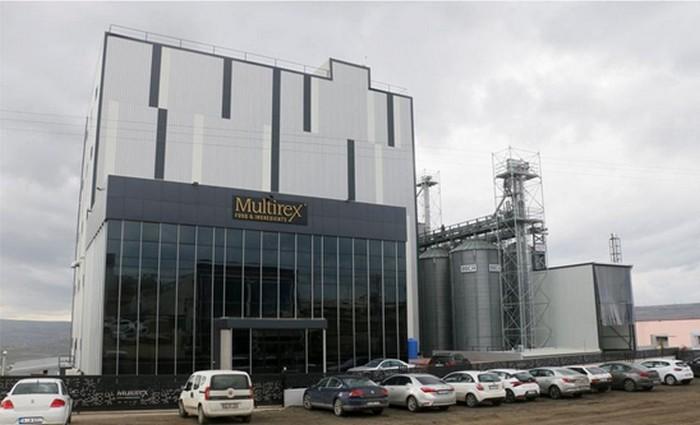 Extrusion
Extrusion
1+ MIN
13/01/2022
FAMSUN is an integrated solution provider of plants, equipment and services in the farm-to-table industry chain.
It is the food standard factory invested by Tekirdag Un company in Turkey (Europe side), which is fully designed and constructed according to UN food standard. This project use FAMSUN latest twin screw Extruder, steam type Dryer and Paddle mixing system, and pneumatic transporting which are all designed by FAMSUN USA R&D Institute. The success of this project will surely enable Tekirdag Un to offer higher quality, green and safe food to the world. by All Pet Food
 Dogs
Dogs
6+ MIN
12/01/2022
What will it take to end pet homelessness?
Nothing brings joy to a home quite like a pet — and in an ideal world, all pets would live in loving homes. All dogs would have beds to snooze on and parks to play in. All cats would have laps to curl up in and toys to bat around the living room. After all, don't they deserve it for the endless cuddles, slobbery kisses, and getting us out of the house (and out of our heads)? One look at rescue accounts on social media, though, and it's clear this is far from the reality today. Worldwide, pet homelessness is a persistent, complex issue, with hundreds of millions of stray cats and dogs living on the streets or in shelters. Some of these animals may find homes through adoption. Jill Hilbrenner, Vox Creative's executive editor, welcomed her second rescue pup earlier this year, and says she can't imagine getting through the pandemic without Suzy Lee and Blanche. 'Having a dog — and now having dogs, plural — is grounding,' she says. 'When I feel my chest clenching from worry, I can look at my dogs, and it helps that melt away. I'm not saying skip the therapist, but I am saying dogs are great medicine.' That said, she adds, 'It breaks my heart thinking about what they had to go through before we met.' Where we stand today Even with so many prospective owners willing to rescue — and with dog and cat ownership on the rise in countries like China and India — we have a long way to go. But how far, and how can we get there? Mars Petcare took on a first-of-its-kind initiative to answer these questions by measuring the global scale of cat and dog homelessness and helping to identify the root causes. Created with a panel of animal welfare experts and organizations, the State of Pet Homelessness Index analyzes data from 200 global and local sources to quantify the issue and help identify its underlying causes at a country-specific level. The initial phase evaluates nine countries on their care for, acceptance of, policies to support, and cultural attitudes towards pets to help provide a crucial benchmark to measure progress. In the UK, for example, data show strong legislation protecting animals against cruelty brings the Index score up, but show it's pulled down by a lack of pet-friendly housing. While in India, data show most people report a positive experience owning a cat or dog, but a high prevalence of strays and a low sterilization rate represent significant obstacles to tackling pet homelessness. The past tells us that progress is possible, though. In the 1970s, the US was euthanizing 13.5 million homeless dogs and cats yearly; today, that's down to about a million annually, even as the country's pet dog and cat populations have more than doubled. 'There's been a huge improvement in the way [animal welfare organizations are] seeing this particular challenge,' says Andrew Rowan, president of WellBeing International and one of the Index experts. 'And so the question is: how much better can we do, and how do we get there?' Addressing a global issue According to Index data, 224 million homeless cats and dogs live in the US, UK, Germany, China, India, South Africa, Greece, Mexico, and Russia. Of those, 114 million are stray cats, 91 million are stray dogs, and 19 million are cats and dogs in shelters. At the start of the Index project, Mars Petcare's Advisory Board began with one fundamental question: What does the word 'homeless' mean for pets? Homelessness looks very different from one country to the next, so a one-size solution is unlikely. In some regions, says Rowan, it's common for dogs and cats to get food and shelter from the community, but that stops short of veterinary care. Sterilization is often credited with reducing the number of US dogs and cats euthanized, but a similar initiative in India would mean sterilizing 30 to 50 million female dogs — a massive undertaking that won't happen overnight. Once pet homelessness is defined, the data show a localized approach is needed. Why measure pet homelessness? Science tells us that both humans and pets benefit from the other's companionship. For humans, research shows pet ownership can have positive physical and mental health impacts by reducing stress, lowering blood pressure, and helping prevent heart disease, among other illnesses. Dogs can also experience spikes in oxytocin — a neurochemical closely associated with trust, love, and social bonding — during positive interactions with their owners. Dogs have evolved over generations to be largely reliant on humans for food, shelter, and care, and without sustained care they're more susceptible to disease, malnutrition, and accidents. 'Across our family of veterinary businesses, our Associates have seen the problem of pet homelessness around the world and have worked to provide care and support for these animals,' says Jen Welser, Mars Veterinary Health's chief medical officer. 'We've implemented a wide range of programs on responsible pet-ownership education, improving access to veterinary care, and shelter support.' Until now, Welser notes, there was no way to reliably evaluate such a multifaceted issue, and no clear way to measure programs' impacts. The housing dilemma Many pet owners (especially those in big cities) know the challenge of finding pet-friendly housing. Policies that ban or restrict animals can deter many people from adopting pets or even drive owners to relinquish pets they have. According to Index research, more than half of prospective owners said it's hard to find a rental that allows dogs, and 1 in 4 agreed it was difficult to find one permitting cats. 'There's a mantra, especially in the United States, that there are too many animals and not enough homes,' says Ellen Jefferson, president and CEO of Austin Pets Alive! and American Pets Alive! 'And the reality is there are enough homes, but if a lot of those homes are not inclusive of the pet part of the family, then that is driving shelter intake and driving animals to be euthanized in shelters.' With more data and awareness, she says, lawmakers and landlords can take steps to address this issue. Creating care for all Improving access to quality veterinary care is also essential. According to the Index data, one in three pet owners avoid the vet because of cost concerns. With more education and support, owners could be better prepared for costs when they arise. 'If we can really hone in on providing that support, think about the dramatic decrease in shelter intake that would happen,' says Jefferson. Plus, this support doesn't just help pets — it also helps the people that love them. Before adopting, Hilbrenner studied up on caring for rescues — 'how to appear non-confrontational, how to read dog body language' — and over time, she says, both dogs have gained confidence. Still, it's an ongoing process. 'I like to think we're teaching each other to be more trusting and to spend less time in fight-or-flight stress mode,' she says. People thrive with pets, and pets thrive with people — and with the help of the Index, a world where both have access to the support they need is in sight. 'For the first time, we have insights into which factors are influencing the issue most in each country. This means we can lean into the most impactful ways to make a difference to help deliver on our purpose: 'A BETTER WORLD FOR PETS,'' says Mars Petcare's Welser. 'Our aim is that we — along with animal-welfare organizations, policymakers, pet professionals, academics, and researchers — can use this tool as a reference point that will better equip us all as we work to help end pet homelessness together.' by Hilary George-Parkin - Mars Pet Care
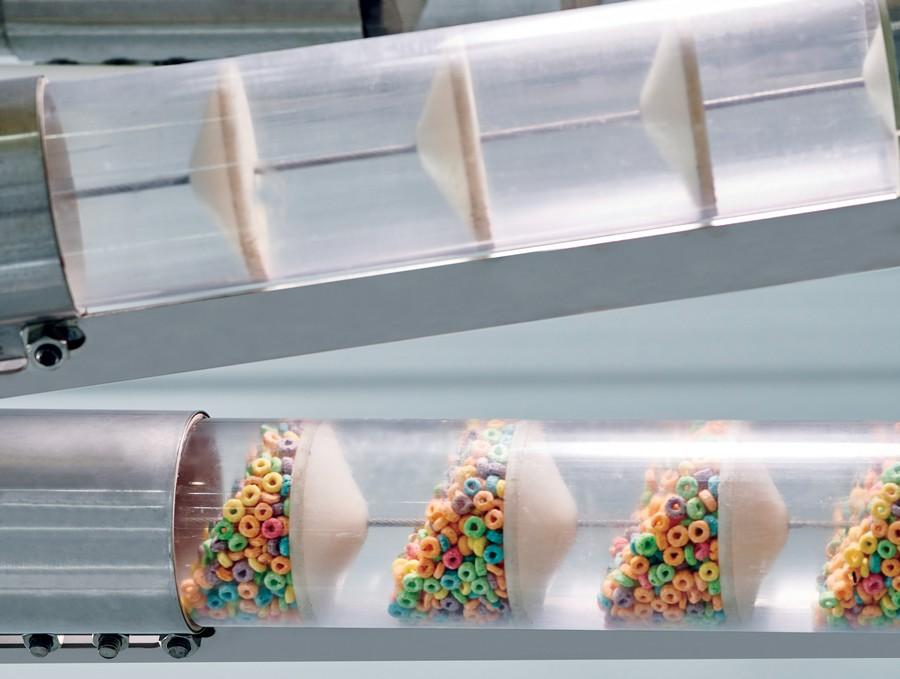 Conveying Systems
Conveying Systems
3+ MIN
11/01/2022
May River Capital Acquires Cablevey Conveyors - Market Leader in Specialty Conveyance Serving the Food and Beverage, Pharmaceutical and Chemical Markets
Chicago — January 10, 2022 – May River Capital, a Chicago-based private equity firm focused on lower middle market industrial growth companies, announced today that it has acquired Cablevey® Conveyors, a global manufacturer of tubular drag conveyor systems based in Oskaloosa, Iowa. Cablevey is a market-leader in enclosed conveyance systems, with installations in more than 65 countries. The company's technology is known for food-safe, efficient and low-energy consumption performance for some of the most demanding applications in the material handling sector.
'Cablevey's focus on solving conveyance application challenges using our proprietary cable drag technology, and the resulting dramatic growth has positioned the company as an anchor asset to build a larger conveyance platform,' said Cablevey CEO Gary Hall. 'The additional investments now possible with May River allow us to continue to increase market share with existing and top tier customers in our core food and beverage sectors, including tree nuts, coffee and pet food, as well as expand in other growth markets like pharmaceuticals.'
'Gary and I could not be happier for the employees, the Oskaloosa, Iowa, community and customers of Cablevey, and we are thrilled to partner with the May River team,' said Cablevey President Phil Hall. 'We look forward to further building upon Cablevey's 50-plus year history of developing and bringing new product innovations to market, such as our new 8' drag conveyance system that adds tremendous value to those who rely on Cablevey to deliver clean, fast and cost-effective conveying solutions.'
'It's truly a privilege and opportunity to lead a business like Cablevey and the dedicated Cablevey team,' explained Brad Sterner, who will succeed Gary Hall as Cablevey CEO. 'Gary, Phil and I are looking forward to working through the transition as we collectively turn our attention to the next phase of the company's growth.' Sterner will continue as Executive Chairman of Advanced Material Processing (AMP), a May River 'sister' platform specializing in material processing equipment for regulated end markets. This 'sister' relationship will offer potential synergies with Cablevey that include many shared customers in the food, pharmaceutical and chemical end-markets.
'We are excited about the specialty conveyance sector and attractive high growth end markets served by Cablevey and the highly complementary AMP process equipment platform,' explained May River Partner Steve Griesemer. 'As the handling and process industries continue to expand, leading end users in the food and beverage, pharmaceutical and chemical verticals seek to align with innovative partners that can be counted upon to deliver market-leading solutions. Cablevey will serve as a strong foundation within the material handling segment for delivering high-impact solutions to these global, blue-chip customers.'
Hall said the timing of the announcement is meaningful, as the acquisition closed on December 22, the exact date of the company's 50th anniversary.
'Achieving such a significant milestone serves as a reminder of our commitment to our employees, customers and community,' added Hall. 'In fact, Cablevey will continue to operate in Oskaloosa and contribute to our local Mahaska County economy as we have every day for the past 50 years.'
Winston & Strawn served as legal counsel to May River. NCP Inc. served as financial advisor and Belin McCormick served as legal counsel to Cablevey Conveyors and its shareholders.
About May River Capital
May River Capital is a Chicago-based private equity firm focused on investing in lower middle-market, industrial growth companies. May River Capital invests in high-quality industrial growth businesses, including precision manufacturing, engineered products and instrumentation, specialized industrial services, and value-added industrial distribution services. For more information, please visit mayrivercapital.com.
About Cablevey Conveyors
Cablevey Conveyors is a global specialty conveyor manufacturer that designs, engineers, assembles and services tubular drag cable and disc conveyor systems. With customers in more than 65 countries, the company specializes in moving materials for food/beverage and industrial powder processors that seek food-grade conveying performance with systems that are clean, fast, energy-efficient and cost-effective. Learn more at www.cablevey.com.
by All Pet Food
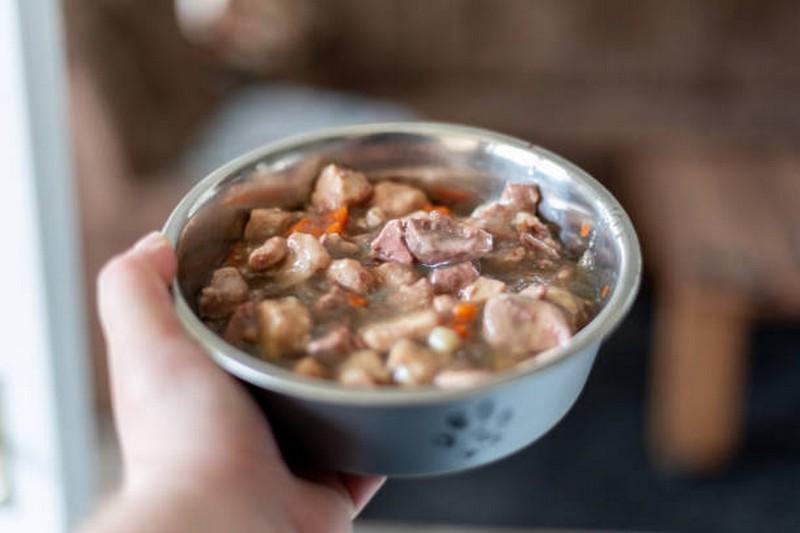 Trends
Trends
7+ MIN
10/01/2022
Wet Dog Food Sales Are Up
Dry dog food has long dominated the market, but within the past year, requests for wet dog formulas have been on the rise, according to industry insiders. Manufacturers are capitalizing on consumers' wet food requests by adding more wholesome ingredients to their formulas, while pet specialty retailers are offering an increased, more diverse selection of wet food products in stores.
'With so many new pet owners and new customers to our stores, demand for more wet food options has grown significantly,' said April Wright, owner of The Dog and Cat, which has two locations in Vermont.
Wright also reported increased attention on fresh ingredients and said Fromm Family Foods and Weruva are extremely popular in both retail locations, adding that both manufacturers 'make it easy' for customers to satisfy their pets' dietary needs because they equally offer a vast assortment of wet options.
Bethany Lontz, store manager of Blue Dog Pet Shop in Lemoyne, Pa., said wet food with sustainable sourcing is popular, and Weruva dominates as the store's most popular line.
'Most customers that are buying wet food are doing so either because they have older dogs that they want softer food for, or they're looking for a topper because their dog is picky with just dry food,' Lontz added. 'People also like to see food that looks similar to theirs, so shredded foods with veggies in them are usually quicker to sell than pâté diets.'
Justin McClenaghan, owner of Justin's Pet Store in Cobourg, Ontario, Canada, reported seeing an increase in customers buying cans of wet food as toppers or meal enhancers.
'People are looking at their pet's food bowls wondering what it must be like to eat the same, dry thing every day without a change,' McClenaghan said. 'Having spoken to many customers, the idea of simply giving your dog kibble, and kibble alone, is old fashioned. More than ever people want to spoil their dogs with more diverse meals.'
The COVID pandemic required pet owners to spend more time with their pets and further evaluate their companions' eating habits, said Rob Cadenhead, general manager of Gott Pet Products, the St. Francis, Wis.-based parent company of Hound & Gatos. As a result, the motivation to add variety to pets' diets prospered, along with requests for high-quality ingredients.
'Demand for wet food has been higher in these pandemic-challenged times, which is driven by pet owners having more quality time to spend with their dogs,' Cadenhead said. 'They're more interested than ever in serving something special and super tasty to their pets, which is what wet foods and toppers are all about.'
While the pandemic has driven demand, supply chain issues could take a massive toll on future sales of wet food products, insiders noted.
Kevin Eddy, president of Pet Food Warehouse, a pet store in South Burlington, Vt., reported supply chain issues with canned items prior to the pandemic. Eddy noted a boost in wet food sales over the past six months, but wondered about the effects of recurrent supply chain issues.
'At the moment availability is our biggest concern,' Eddy said. 'Now with the massive global supply chain issues, availability is even more uncertain.' Fortunately, some manufacturers are looking for ways to keep customers—and pets—a priority and combat supply chain frustrations.
'Our parent company, Wixon Inc., recently announced plans to invest over $15 million in a large-scale project that includes purchasing new manufacturing and packaging machinery and acquiring a 100,000-square-foot facility in an industrial park near our headquarters,' Cadenhead said. 'But what's equally important, it will assure our retailer partners of an even steadier product supply.'
Pricing
Does Price Affect Consumers' Decision to Buy? Dog owners can be hesitant with cost when introducing wet varieties into their pets' diet, industry insiders reported. Pricing is almost always a consideration when people are comparing wet recipes and brands, said Rob Cadenhead, general manager at Gott Pet Products, the St. Francis, Wis.-based parent company of Hound & Gatos.
'Purveyors of premium diets need to justify why pet owners should pay more for their brands,' Cadenhead said. 'Hound & Gatos recipes, for example, are exclusively prepared with traceable ingredients from reliable suppliers. They're made with 98 percent real meat, poultry or fish, which are considerably costlier than grains or plant-based proteins.'
Wet is an essential part of a dogs' diet and should be added to bowls to improve their meals, said Jason Trickett, vice president of merchandising for Ren's Pets, a Canadian retail chain with more than 30 locations.
'Consumers are looking to make the right choices for their pet, because they are part of the family and they want to ensure they are feeding the highest-quality products,' Trickett said. 'We don't see price as a barrier into the category, and we see wet as an easy addition to improving a pets' diet.'
But for customers who are budget conscious, wet food toppers can be great alternatives. When wet food is used as a topper, more people are inclined to splurge as it can last them four to five days, said Justin McClenaghan, owner of Justin's Pet Store in Cobourg, Ontario, Canada.
Making the proper recommendations for a canine and understanding a customer's price range can make a great difference when cost is a concern, said Larissa Wasyliw, vice president of e-commerce and marketing at Ren's Pets.
'There are statistics out there that pet parents would rather spend money on their pets instead of themselves,' Wasyliw said. 'They truly care about the well-being of their pets and want to feed them the best they can.'
Consumer Education
Understanding and Sharing Dietary Benefits
Dog owners are increasingly embracing wet diets as a way to give their pets more variety or simply as a topper to kibble. Customers that are new to the category might require guidance from their local independent pet store to find the right option for their dogs.
Rob Cadenhead, general manager at Gott Pet Products, the St. Francis, Wis.-based parent company of Hound & Gatos, advocated taking a 'consultative approach' with customers shopping the wet dog food set.
'Some are simply looking for a tasty topper to add variety to their pet's meal routine, while others are searching for a healthier diet or have specific nutritional issues in mind,' Cadenhead said. 'Hound & Gatos offers a wide range of materials to educate staff members on our complete product line. We also provide training sessions throughout the year to help further employee knowledge.'
Staff training is key, said Jason Trickett, vice president of merchandising for Ren's Pets, a Canadian retail chain with more than 30 locations.
'Vendor product knowledge training has been happening across all our 33 locations now that lockdowns are over,' Trickett said. 'Staff listens carefully when a customer comes in and recommends the best option for the pet. Our vendors are also excellent with keeping our teams up-to-date on all of the product information.'
Having access to a large variety of wet food diet lines can be critical for customers who have ingredient concerns due to their pets' dietary complications, industry insiders noted. 'Pet owners are becoming more educated that enhancing a dry food diet with wet, freeze-dried or frozen improves the health and well-being of their pets,' said Kevin Eddy, president of Pet Food Warehouse, a pet store in South Burlington, Vt.
Increased resources and tools are available online for consumers to learn more about enhancing pets' wet diets. 'Shoppers themselves are becoming more self-educated using the internet as a tool for knowledge,' said Justin McClenaghan, owner of Justin's Pet Store in Cobourg, Ontario, Canada. 'More and more people are buying canned food without asking for opinions from staff.'
Trade Talk
Ann Hudson, vice president of marketing for Whitebridge Pet Brands in St. Louis. What's driving demand for wet diets in the dog food category? What innovations does Whitebridge offer in this segment?
Humanization of pets continues to be a primary driver for most things that are happening in food and treats. We sleep with our dogs, we travel with our dogs and we eat with our dogs. And why shouldn't their meals look and taste just as good as ours?
Tiki Dog Taste of the World recipes are made with human-grade ingredients and hand-packed in individual-serving sized cups to keep each meal fresh and conveniently easy-to-serve. With ingredients like ham and pasta noodles in Italian Carbonara, rice and red peppers in Asian Stir Fry and shrimp and tomatoes in Spanish Paella, each recipe is modeled after international cuisine. Made with dog-safe, human-grade ingredients, they look and smell just like people food.
Shopping for wet is more fun, and because the investment per can or cup is lower, owners can afford more variety in flavors and formats. Owners feel a certain amount of guilt when they dump extruded kibble in a bowl and walk away. Wet food is a meatier and tastier choice than dry food. Unfortunately, most wet foods are made with unhealthy carbohydrates, poor-quality proteins and are too high in fat. Because they all come from a small group of plants in the U.S., they all look and smell the same and use similar ingredients.
Tiki Dog has more than 60 different wet recipes, including four new Whole Foods items in cups. Each version is packed with brown rice in a flavorful consommé made from lobster or fish. Other recipes include Meaty, a taurine-rich line of meat-only limited-ingredient diets for dogs who are intolerant to legumes or grains.
by Alexis Mattson - PeT Ptroduct News
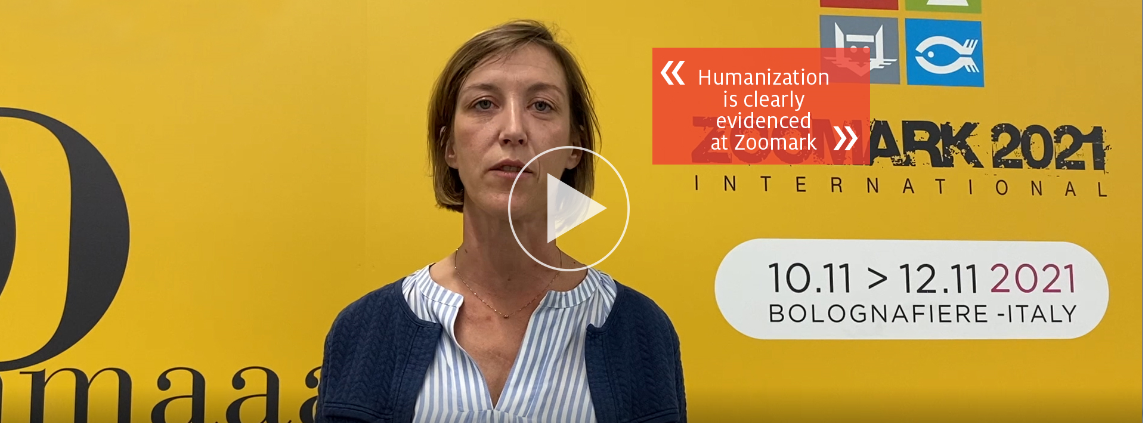 Events
Events
1+ MIN
07/01/2022
Insight & Trends from Zoomark 2021
A biennial show, the last edition was in 2019 and 2021 marked its 19th edition. Zoomark was the only international pet industry tradeshow in Europe that took place in person in 2021. Elodie Rouarch, Diana Pet Food EAME Marketing & Communication Manager, went along. Meat, sustainability, naturality… she sums up the three main trends at the show and shares her observations on one particular trend that continues to amaze her. Find more information about the event HERE
 Vegetable Origin
Vegetable Origin
4+ MIN
06/01/2022
3 Major Dog Product Trends to Watch in 2022
'Humanization trends are driving the dog food category in new directions as people treat pets as members of their family,' said Vic Mason, president of World Pet Association (WPA), which hosts SuperZoo each year. 'As more human-grade foods hit the market, dog owners are eager to try fresh options that promote health and vitality.' James Restivo, client director, pet lead, for The Nielsen Co., pointed out that 95 percent of pets are considered family.. 'Even in the indulgent treat side, we're seeing health and wellness at the underpinning,' he said at the Petfood Innovation Workshop at 2018 Petfood Forum, held in Kansas City, Mo. 'Grain-free treats, meat-first treats, all those treats that are pushing through.' As a result, Future Market Insights estimated in a recent market survey that sales of dog food are projected to grow by a 6.2 percent compound annual growth rate (CAGR) worldwide through 2031. Organic and plant-based options are anticipated to drive sales in the worldwide dog food market, which is estimated to be about $45 billion this year and expected to hit more than $81 billion by 2031. All of this makes sense as we consider that dogs are widely regarded as 'the best friend' of the pet community. However, the growing trends in dog food are no longer as simple as 'organic' or 'natural.' As people experience the benefits of certain diets, they want the same for their pets. For example, dog owners can now find food that mimics their own paleo or ancestral diet, features sustainable ingredients, is made of 'next-gen' ingredients or is inspired from foodie culture and imitates human cuisine. But as every shop owner knows, any area dominated by trends or disruptors can be overwhelming. That's why we've broken down a few dog food categories experiencing steady growth that should extend into the next year and beyond. Organic, Natural Ingredients While sales of natural, organic food have been growing for years, they show no signs of slowing down. In a study done by Farm Journal, more than 82 percent of households in the U.S. buy organic food on a regular basis—accounting for 5 percent of total U.S. food sales, with organic pet food sales close behind. When buying a holistic dog food, owners not only want optimal nutrition, they also want a food that can boost skin and coat health, good digestion and joint strength. Earlier this year, Chewy conducted a survey of 1,500 dog and cat owners to gain insight into their food choices. In the survey, 73 percent of owners demonstrated their pets' health is as important as a family member's. Seventy percent made food choices for their pets that mirror their own, with 80 percent of respondents revealing that health concerns led to higher-quality food purchases. Specifically, millennials and Generation X pet owners looked for grain-free, organic and non-GMO food, with 75 percent choosing these options. 'Last year at SuperZoo, over 300 exhibitors featured natural products,' Mason said. 'With organic and holistic products in such high demand, expect to see even more products at SuperZoo next August in our dedicated show floor areas, like Nature's Pathway and Health and Wellbeing.' Vegan and Specialty Diets As more Americans embrace plant-based diets, many pet owners are also seeking to feed their dogs in accordance with their values. Fruits and vegetables are becoming more common in foods for their nutritional value and flavor. Even though many people consider dogs to be carnivores, dogs can benefit from the fiber and antioxidants in berries and vegetables, including strawberries, raspberries and sweet potatoes. Additionally, while dogs need protein, some owners are choosing foods that contain alternative sources. As with humans, obesity in pets is a big concern, with specialty diets becoming more science based and sophisticated each year. Expect foods customized for life stage, lifestyle, weight and breed to remain hot sellers in the months to come, including low-calorie diets and mono-protein diets to treat allergies. You're also likely to see owners asking for more transitory trends they see on TikTok—like a perfect 'bark-cuterie' board made of bacon and blueberries or 'pup-sicles' made from frozen yogurt. Sustainability It's important to note that the concept of sustainability goes beyond ingredients; it also influences choices of packaging and operations. Eighty-four percent of respondents in the Chewy survey indicated they are interested in homegrown, domestically produced food. Even beyond where food is sourced, customers are also interested in how animals are raised as well as a manufacturer's commitment to sustainability. As dog owners continue to explore new diets and alternative products for their pets, this is a great time to be a pet retailer. By providing specialty and sustainable products, you won't just gain customers, you'll also gain their trust and loyalty. If you want to know more about which trends and treats to stock, then mark your calendar for SuperZoo 2022, Aug. 23-25.'SuperZoo is the ideal place to learn about nutrition, speak directly with manufacturers and suppliers, and connect with other pet retailers who have experienced success with certain brands and diets,' Mason said. 'While we are all incredibly passionate about our four-legged customers, ultimately, we learn through our human connections.' The World Pet Association (WPA) brings the pet world together so quality interaction and education between and among product suppliers and pet owners can create healthier, happier pets and a healthier, more productive pet industry. Founded in 1950, WPA brings thought leadership, innovative thinking and best practices to the pet industry, working to inform and educate the general public in order to ensure safe and healthy lifestyles for our animal friends. by The World Pet Association
 Dogs
Dogs
4+ MIN
05/01/2022
Por Luciana Chippano
How Pet Food Influences on Hyperactive Dogs
This time we´ll review the different characteristics that a food should have (or not) for hyperactive dogs. Certain breeds of dogs historically destined for hunting, herding and rescue such as the Doberman and German Shepherd have been used for these activities precisely because of their high amount of energy. So, logically, they need a diet that is adjusted to the energy levels they use and the amount of activity they do on a daily basis. When we exercise (both animals and humans) we produce a large amount of free radicals (molecules that are harmful to DNA). A great way for the body to neutralize the oxidative action of free radicals is through the consumption of antioxidants. Scientific evidence Antioxidants In 2018 the Journal of Animal Science published a study where American foxhounds were evaluated during their hunting season. To do this, all the dogs were divided into two groups: one was fed a balanced food labeled "for high performance"; the other group received a similar diet, but with supplements of antioxidants, vitamins C, E, lutein, zinc, and taurine. During the study, all the dogs were taken hunting for a period of between 2 and 5 hours with a frequency of 2 to 3 times a week. At the end, blood samples were taken to evaluate and compare the levels of oxidative stress and other blood metabolites with the samples taken before they started the diet and with others taken throughout the 7 months that the investigation lasted. It was confirmed dogs consuming a diet rich in antioxidants have lower levels of oxidative stress; however, that group of dogs did not perform better. However, although the increase in antioxidants did not change physical performance, it did improve general health: it was found that, in the course of the research, dogs fed the diet without supplements had a large decrease in their levels of taurine and vitamin E. On the other hand, in the dogs that were given supplements, maintained or improved levels of taurine and vitamin E were observed. Protein Dr. Joseph J. Wakshlag of Cornell University School of Veterinary Medicine focuses his studies on the relationship between protein intake and the health and performance status of active dogs such as the English Greyhound or Siberian Husky. Wakshlag has stated that a study was conducted focused on analyzing dietary proteins and their ability to preserve musculoskeletal integrity, as well as to promote the maintenance of the levels of total proteins, albumin and red blood cells. Serum hematocrit and albumin levels tend to decline while a dog is training or engaging in vigorous physical activity, and adequate protein intake is beneficial - this study stated that between 24% and 30% of metabolizable energy in the dog's diet Active ingredients should be highly digestible animal protein, ej.: lamb, beef and chicken. Professionals Opinions Veterinarian Lee Danks conducted in-depth research on canine behavior and feeding, which is summarized: Protein is frequently an influencer on behavior. High protein diets are believed to lead to increased hyperactivity. Studies in the area often focus on specific amino acid neurotransmitters and hormone precursors as responsible dietary linkages. L-tryptophan (a precursor to serotonin) is unique to dogs: the concentration of this neutral amino acid relative to others in the same group is what appears to have a greater effect on behavior. Factors such as digestibility and carbohydrate intake affect the uptake and transport of L-tryptophan across the blood-brain barrier. Carbohydrates the type of carbohydrates determines the postprandial state of the animal, the duration of satiety and the relative energy density of the diet. The digestion and absorption of simple monosaccharides affects fluctuations in blood glucose (and the availability of L-tryptophan). For her part, Dr. Karen Shaw Becker has given her opinion about food for hyperactive dogs: 'Athletic dogs must consume adequate amounts of antioxidants to avoid the damage that free radicals can produce. Fresh food is a good way to provide antioxidants to dogs with intense periods of activity. Also, according to new research, it is important that all hyperactive dogs consume the right amount of taurine to protect the heart. Very active dogs need a diet rich in nutrients, the protein source must be of excellent quality and of animal origin, and the diet must be relatively high in fat'. To consider There are certain nutrients that, as an industry, we must make sure that they are present in a food specially designed for hyperactive dogs or that will go through periods of great physical activity, such as hunting dogs or police dogs. Vitamin A and carotenoids: found in the liver, in brightly colored fruits and vegetables like broccoli and carrots. Vitamin C: found in citrus fruits, green peppers, and green leafy vegetables. Vitamin E: found in nuts and seeds. Selenium: it is in protein sources such as fish, chicken, beef and eggs. Lutein: in quantity in dark green vegetables like spinach and broccoli. Dogs that by breed or by activities are in a constant energy drain need a diet that is richer in nutrients. Your body needs certain specifications that, as we have seen in the article, can be achieved by making some adjustments to traditional food formulas. It will be up to the industry, once again, to supply the demand for these canines. By: All Pet Food
 Micro Ingredients
Micro Ingredients
3+ MIN
04/01/2022
Por Luciana Chippano
Posbiotics for Pets - What are they and how can they benefit Pets health
In this article we´ll explain what exactly postbiotics are, what they are for, what are their benefits and if we should evaluate including them in our feed formulas. Today, probiotics and prebiotics are almost mandatory ingredients in pet food, since we know every day more benefits for the animal health . The truth is that a large part of the immune system of pets is associated with the intestine, so intestinal health is closely related to the general immune health of the animal. But what are postbiotics? By postbiotic we understand a thermostable and bioactive metabolic by-product, originating from intestinal membrane segregation. When probiotics (the good bacteria of the intestinal flora) digest and use prebiotics (the food of the bacteria), the final 'result' of this process is the release of postbiotics in the intestinal environment. In fact, their name 'pos' refers to the fact that they are produced after the interaction between intestinal microbes. The simple formula is: prebiotics + probiotics = postbiotics. Postbiotics can include metabolites such as enzymes, peptides, proteins, exopolysaccharides, organic acids and lipids (short chain fatty acids - SCFA such as acetate, propionate and butyrate), and fractions of structural components, mainly of the bacterial cell wall, such as teichoic and lipoteichoic acid, peptidoglycan, bacterial surface layer proteins, and other polysaccharides. Because they are important? Various investigations affirm that intestinal microbiota plays an important role in practically all the functions and processes of the body, and can be altered by factors such as stress, diet, age or the consumption of drugs or medications, among other causes. The main difference from probiotics and prebiotics, and the main reason they are increasingly being included in dry food formulas, is their alteration target. That is, while the first two alter the composition of the intestinal microbiota to prevent diseases, postbiotics are responsible for modifying the function of said microbiota to strengthen and improve intestinal health in general. In a simple way, we can say that, as metabolites, postbiotics are responsible for guiding and activating the immune system and promoting anti-inflammatory responses throughout the body. Some ingredients that began to be used and that promote the segregation of postbiotics are brewer's yeast or derivatives of it such as mannan-oligosaccharides and beta-glucans. 'Postbiotic metabolites are the new frontier in microbiota science. Scientists are discovering that postbiotic metabolites are the main health regulatory compounds in the body. Probiotic bacteria produce postbiotic metabolites, which are the tools that result in a predisposition towards the health of the immune system. The body that has a wider range of "tools" in the microbiota will be more effective, which does a better job of regulating the health of the whole body. " Pelton, 2019 Benefits associated with postbiotics Energy Postbiotics are an important source of energy for the probiotic bacteria themselves and for the epithelial cells that make up the intestinal lining. In this sense, the short chain fatty acids that compose them are responsible for working to optimize motility within the gastrointestinal tract and reduce inflammation. Endurance One of the main disadvantages of probiotics in pet food is that they are live bacteria that often do not survive the different production methods used today to make feed, such as extrusion and its various types, for example. On the contrary, this is something that does not happen with postbiotics, according to several experts. Other benefits associated with these bioactive by-products are: Optimization of the general immunity of the body, because it reinforces the integrity of the digestive mucosa and the mechanisms of nonspecific immunity of the animal. Maintaining a healthy gut microbiota. Increased vitality. Conclusion While the specific mechanisms by which postbiotics work have yet to be fully discovered, what is known about their broad spectrum of benefits and immunomodulatory effects is relevant enough to include them in pet food formulas (Wegh et al., 2019). So far, what can be said is that postbiotics can positively affect the animal immune system. As we already know, pet owners are increasingly concerned about the pet food ingredients they choose for their dog or feline children, and so much so that the trend for Premium food does not stop: they continue to search for new, innovative and innovative ingredients. high nutritional value. We believe that food manufacturers should find innovative ways to differentiate themselves in the market, now taking into account this new ingredient that can be most beneficial for the short, medium and long term health of pets. by All Pet Food
 Formulation
Formulation
3+ MIN
03/01/2022
Feeding Puppies
Well don't worry, we're here to help! With a quick look at some of the fundamentals of feeding you'll soon have no trouble finding the very best food for your brand new best friend!
Puppy nutritional needs
After weaning, which usually occurs when the puppy is 4-6 weeks of age, puppies essentially require all of the same nutrients from their diet as adult dogs but because they are growing they need more of some of them per pound of bodyweight than their fully-grown counterparts.
It's particularly important that puppies receive plenty of good quality protein from their diet as well as the right level of fat and certain important minerals like calcium and phosphorus for healthy development.
Meat is the best source of protein for dogs as it tends to be easier for dogs to digest and utilise than other forms of protein like those from plants. A good diet for a puppy should therefore include meat as the first ingredient and meat should make up a good proportion of the food as a whole.
Puppy-specific vs all-lifestage foods
For puppies, store-bought pet foods come in two forms:
1. Puppy-Specific foods
These foods are made to cater specifically for the nutritional needs of puppies. For that reason they usually feature higher levels of protein, fat and the important minerals to allow for healthy growth and development.
2. All-lifestage foods
Another way to increase the amount of protein, fat and minerals going into your puppy is just to feed a 'regular' food, but more of it. This is essentially the idea behind 'all-lifestage' foods.
Although this approach is not as tailored as a puppy-specific food, it is arguably the more 'natural' way to feed puppies since dogs in the wild, along with all other mammals including us humans, tend to eat more or less the same foods throughout our lives after weaning, only varying the quantity of food rather than the type of food.
As long as the diet is of a high quality and agrees with the puppy, either approach can work equally well. Like all pet foods, both puppy foods and all-lifestage foods can vary enormously in quality so be sure to take a look at the nutritional ratings on the Dog Food Directory to get an idea of how the different options compare.
Making the change
Going to a new home for the first time is usually an extremely stressful period for puppies so the last thing you want to do is add to the stress by switching the diet. For this reason, it's always best to stick to whatever food the breeder has been feeding for at least the first 2 weeks before making any changes.
Once your puppy is properly settled in, it's still important to ensure that any dietary changes are made gradually, slowly introducing the new food over the course of a week or two to give the system plenty of time to adjust.
Feeding the right amount
Any complete food that is labelled as suitable for puppies should have suggested puppy feeding guidelines on the packaging. This is certainly the best place to start but as all puppies are different it's important to keep an eye on the individual's weight and adjust feeding amounts accordingly. You can find our brief guide on how much to feed here.
From puppyhood to adulthood
While 12 months is generally regarded as the point when dogs reach adulthood, some breeds mature at very different rates than others. Smaller breeds, for example, may reach full size as early as 9 months old while some giant breeds can continue growing until 18 months or even older.
As their growth slows, puppies naturally need less food and many have a reduced appetite. At this stage it is important to change on to an adult food (or reduce the feeding amounts if feeding an all-lifestage food) to avoid any excessive weight gain.
by David Jackson
 Cats
Cats
3+ MIN
29/12/2021
To Chelate or Not to Chelate Minerals?
The Association of American Feed Control Officials (AAFCO) has published minimum requirements for each of the 12 essential mineral for dogs and cats. Currently, AAFCO nutrient profiles only set maximum amounts for iodine for cats and iodine, calcium, phosphorus, and selenium for dogs. Minerals in pet foods come from the main ingredients – liver is a good source of copper and iron, bone meal is a good source of calcium and phosphorus, and potatoes are high in potassium – or can be added as concentrated supplements if they are not in high enough amounts in other ingredients to meet the AAFCO minimum requirements. Minerals that come from pet food's main ingredients The minerals that come into the diet from the main ingredients like meats are often called 'organic' or chelated minerals. This has nothing to do with the definition of organic we usually think about for pet or human foods, but instead is the definition of 'organic' based on chemistry – it means that these minerals are chemically bound to proteins and other biological molecules. Similarly, the term 'chelated' means 'attached to a biological molecule'. Supplemental minerals Concentrated mineral supplements added to pet foods can be lab-created chelated versions or they can be the mineral as it is found outside the body in nature – as an 'inorganic' mineral. Copper sulfate, potassium chloride, and sodium chloride (table salt) are examples of inorganic minerals used in pet foods. Commercially-made chelated minerals are a newer ingredient in the human and pet food chain. An example of a chelated mineral ingredient in a pet food is 'zinc proteinate', which is zinc attached to a small piece of protein. Because they more closely resemble the minerals that come in with other pet food ingredients, chelated minerals can sometimes have higher absorption by the dog or cat – so less of the chelated mineral may be needed than the inorganic mineral to result in the same effect in the body. Many 'premium' pet foods use chelated minerals in place of inorganic ones and market them as being better, healthier options than inorganic minerals. Which types of minerals are the best? The truth is that chelated minerals are not always more easily absorbed by pets and even when they are, greater absorption is not always a good thing. The majority of the research over the past decades that has developed safe minimum and maximum levels of minerals for pets such as those in the AAFCO nutrient profiles, has used inorganic minerals, not chelated minerals. Therefore, substituting a chelated mineral at the same amount as an inorganic mineral could increase the risk of toxicity and adverse health effects. We need new studies that look at the minimum and maximum doses of chelated minerals for healthy pets and those with certain disease conditions to help ensure that if chelated minerals are included in a diet, they only benefit the pet, not potentially cause harm. Generally speaking, chelated minerals probably have the most potential for pets with known digestive issues that could reduce their ability to absorb nutrients from their food, or when used as supplements for pets with confirmed mineral deficiencies. For pets at risk of excessive minerals, like pets with copper storage disease or bladder stones, diets that use inorganic sources might be preferable. Always talk to your pet's veterinarian if you have questions about your pet's mineral needs before adding a supplement! Bottom Line For the majority of pets, the type of minerals in the food probably doesn't matter as long as the diet you choose is high quality and 'complete and balanced'. Based on our current knowledge, it is unlikely to be worth it to pay more for a diet with chelated minerals for the average healthy pet. Always talk to your veterinarian before adding any mineral supplements to your pet's diet. by Cailin R. Heinze, VMD, MS, DACVIM (Nutrition)
 Animal Origin
Animal Origin
3+ MIN
23/12/2021
Bühler builds large-scale insect plant for Agronutris in France
This collaboration is a major milestone for both organizations. It reinforces Bühler's commitment to ambitious targets that will help mitigate climate change and build a more sustainable food system and supports Agronutris' goal to establish itself as a world leader for sustainable nutrition. The plant is planned to go into operation in 2023. The 16,000 square meter insect plant in Rethel, France, when operating at full capacity, will process up to 70,000 tons of organic residues and produce high-quality protein for the aquaculture and pet food markets every year. 'With the launch of this new site, Agronutris is entering its industrial deployment stage. The facility of Rethel will be our springboard for the further industrial development of our activity,' says Mehdi Berrada, CEO of Agronutris. 'Bühler is a world-leading company with a tremendous experience in the food and feed sector. We trust in their capabilities to support us in the insect industry. This allows our teams to focus on our core activities: insect biology and operational management of our production flow. Our research and development activities make for our competitive advantage.' Bühler's solutions for Agronutris will cover the entire supply chain. This includes feedstock preparation to provide safe, palatable, and nourishing feed to the larvae and a fully automated larvae growth system with sophisticated climate control. Bühler will also deliver the processing line to efficiently transform the grown larvae into protein meal and lipids with consistent quality, as well as the frass (excrement) handling system for a secure offtake of the rearing residues. In addition, Bühler will be responsible for the entire automation and the timely project execution. The latter encompasses engineering, procurement, manufacturing, supply, installation, and commissioning. 'The new project with Agronutris is a milestone for us. It confirms our goal of establishing ourselves as a key solution provider for the insect industry and to increase the inclusion of insect proteins in animal feed. Our solutions contribute to more sustainable feed supply chains,' says Andreas Baumann, Head of Market Segment Insect Technology at Bühler. Growing Demand To feed 10 billion people who are expected to live on our planet by 2050, about 250 million metric tons of additional protein will be necessary every year. This is an increase of 50% compared to today. The industry must address this challenge with a more sustainable production of existing sources of protein as well as alternative sources for direct human and animal consumption. Edible insects can play a unique role in upcycling food waste streams to high-quality proteins, which makes them an increasingly important source of protein while being environmentally friendly. The market of insect proteins as feed is expected to significantly grow in the next ten years. The total turnover of insect feed operators is expected to achieve EUR 2.2 billion per year by the end of the decade. This growth will be led by two main sectors: the aquaculture sector, which will make up for 30% of sales volumes of insect producers by 2030, and the petfood sector, which will account for 40% of the insect protein sales volumes by 2030. Agronutris aims to contribute to the emergence of this industry and to become one of the global leaders of the sector. The growth of its team (joined by entomologists and agro-industry experts), its recent fundraising of EUR 100 million, and the collaboration with major companies such as Bühler, are some of the factors that will allow the company to live up to this ambition. Bühler is committed to reduce water, energy, and waste by 50% in its customers' value chains by 2025. This will help mitigate climate change and be the foundation of a more sustainable food system. Insects offer a unique opportunity. They are not only a healthy source of protein for food and feed, but they can be fed on waste, therefore converting food waste into protein. And their frass can be used as a fertilizer. That is why they are an important pillar in Bühler's strategy to become the leader in sustainable proteins for food and feed. by Buhler group All Pet Food
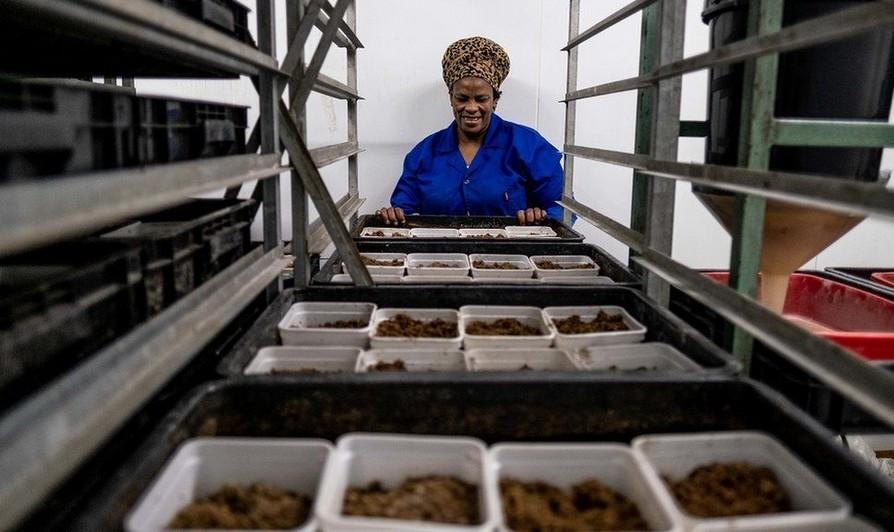 Animal Origin
Animal Origin
4+ MIN
22/12/2021
The South African farm turning Flies into Food for Pets - and Maybe People
Launched in 2018 on an industrial estate on the edge of the city, the Maltento farm feels a long way from its more conventional rural equivalent. Yet each month it pumps out over 10 tonnes of high quality protein-rich feed, most of it destined for export overseas. "You've got a food shortage, and people who are starving, and then you've got a waste problem at the same time. So I started looking at how we can rebalance that," said founder Dean Smorenberg, reflecting on what inspired him to get into this field. He is a former management consultant who began farming black soldier flies in his bathroom in 2016 before entering the business full-time. The model is an appealing one to carbon-conscious consumers: the fly larvae feed on waste food products - in this case mainly spent grains from a nearby brewery - turning it into marketable protein and producing a fertiliser by-product. The process consumes significantly less water and land than other types of protein production and is far less carbon intensive. A 2020 study by researchers in the UK and Germany found that the global pet-food market releases as much carbon dioxide into the atmosphere as the total emissions of the Philippines or Mozambique. Rather than looking to directly challenge the massive global soy or fishmeal industries, which currently provide much of the world's affordable protein, Maltento is looking to offer products that supplement a pet food's flavour or nutritional properties. "Insects have a lot more value than just being a protein," says Mr Smorenberg, pointing out that what are known as antimicrobial peptides in the fly larvae help to improve gut health. "And there's no other crop in the world that can give you 52 harvests a year from one space." The Maltento farm, which is expanding rapidly, is divided into sections according to the various stages of the insects' lifecycle. Pupae undergo metamorphosis in a dark room on the ground floor before being moved upstairs to a breeding enclosure, where adult flies under ultraviolet lights lay eggs in mesh cages. "This is basically the engine room of the farm, if you like," says Dominic Malan, who is responsible for growing the number of potential customers. "The temperature and the humidity are the most important things to make sure they thrive." Next door, in the nursery, the eggs hatch into "neonates" which are distributed into small plastic containers full of feed. These are then stacked in temperature-controlled chambers where they grow at an extraordinary rate. "We put in 0.5g of these little guys," says Mr Malan. "And after six days they've grown [collectively] to 4kg. They're such voracious feeders." Once the flies are fully grown, the containers are emptied into a machine that separates them from the "frass" - effectively fly manure - which will be sold as a kind of organic fertiliser. Mr Malan says there has been considerable interest in this by-product from the pharmaceutical cannabis sector. From this point the flies' larvae can go one of several ways. Many are dried out and exported whole to feed pet chickens in the US. Others are effectively minced into a rough powder which will be used by a Norwegian firm to make dog food. Others still are pressed for their oils, or hydrolysed into a liquid digest. In the corner of the room lie rows of giant white sacks full to the brim with dried larvae. To a human, the bugs taste earthy, with a subtle maltiness that comes from the spent grains on which they are fed. To cats and dogs, says Mr Malan, they are irresistible. According to RaboResearch, a Dutch agribusiness research organisation, global production of insect protein for pet food could reach half a million tonnes by the end of the decade, up from barely 10,000 tonnes today. And it is an industry that is evolving fast. At a laboratory in the Woodstock neighbourhood of the city, with views of Table Mountain, the farm's scientists are constantly seeking to improve the taste and health benefits of the larvae products. This depends on the diet the larvae are fed, the conditions in which they are grown, and also how the final product is processed. "They're actually really versatile," says Dr Leah Bessa, a food scientist with a PhD in using fly larvae as a meat substitute for human consumption. "There's a lot of functionality yet to be unlocked." The latest product Dr Bessa has been working on is something designed to be added to pet foods to improve their taste and nutritional benefits. Before joining Maltento, she made headlines in South Africa after launching a company that sold insect-based ice cream. In a 2013 report, the UN's Food and Agriculture Organisation said eating insects could help to address food shortages around the world. But despite insects being a popular snack in many countries, Western nations have proved resistant. For now, Dr Bessa believes large-scale insect consumption is likely to remain mostly confined to pets. "We're just not quite there yet," she says, adding that squeamishness remains an obstacle. "Dogs are a lot easier to feed insects to than humans at this point." All photographs by Tommy Trenchard
 Dogs
Dogs
3+ MIN
20/12/2021
The Top Three Distributors Join Forces to Accelerate Sustainability
Collaboration is the new competition. As a break from the persistent race to the top between contenders, the leading three independent distributors including Pet Food Experts (PFX), Phillips Pet Food Supplies and Animal Supply Company unite as Icon Pet Sustainability Coalition (PSC) members to pioneer the adoption of sustainable business practices. 2020 was not an easy year for distributors who were caught in a complex web of serving retailers; many who struggled to keep doors open or shift to online purchasing and delivery services, and at the same time distributing products from brands that are experiencing massive supply chain disruption. And then, to add pressure to an already stressed system, pet parents also stockpiled pet food causing unpredictable demand shifts. Nonetheless, the industry fared well as pandemic pet ownership soared, and out of the ashes of struggle comes new opportunity for building back better. As the first distributor member of the Pet Sustainability Coalition, Pet Food Experts had an active year when it comes to sustainability, spending much of 2020 and early 2021 hard at work to support Flex Forward, the first all-inclusive pet food packaging recycling program. Using reverse logistics, PFX rallied retailers and pet parents in the Pacific Northwest to generate approximately 7,000 lbs or 33,500 total used pet food and treat bags. This initial test was set out to inform a potential nationwide recycling program with more than 300 million pet food bags currently ending up in a landfill due to their hard-to-recycle nature. While this unique pilot is a small step in addressing the waste footprint of the 100-billion-dollar pet industry, if scaled, it would provide a solution to one of the industry's most pressing environmental issues. 'Bringing industry leaders together is a necessary escalation in supporting the large-scale efforts that must be mobilized to advance sustainable business practices worldwide,' said Michael Baker, Pet Food Experts' Chief Executive Officer. 'We are making sustainability a priority and this partnership is a step forward in our commitment to reduce the overall environmental impact in our day-to-day business operations,' continued Baker. This is only a single example where collaboration will be required to achieve PSC's vision for the pet industry to make a positive impact on the environment and communities where it does business. Since 2020 was the hottest year on record, there is an increasing sense of urgency to take action. The business community is one of the best levers for change as it can often move faster than the government, and with more impact than an individual, while at the same time reaping greater profitability and return on their investments. While Phillips and Animal Supply Company are new to the Pet Sustainability Coalition, they have arrived ready to take action and with robust enthusiasm. 'As part of our commitment to the pet industry and the environment, Phillips Pet Food & Supplies is proud to become a new member of the Pet Sustainability Coalition. We see our partnership with Pet Food Experts and Animal Supply as the first step in our effort to lessen the environmental impact our industry has on the planet.' said Blaine Phillips, Chief Executive Officer of Phillips Pet Food & Supplies. 'As we begin a new chapter in the evolution of Phillips Pet Food & Supplies, we are proud to strengthen our environmental focus as well as helping to enhance our manufacturer and retail partners' focus on sustainable business practices.' 'At Animal Supply Company, our vision is to have a world where every pet and human is happy, healthy, and safe. This means taking an active responsibility in protecting our planet earth through meaningful sustainability practices that lead to a cleaner and more eco-friendly future for our families, retail partners, and vendor partners. We're proud of our industry forging this partnership with PSC and we look forward to making a difference in changing this world through aggressive social responsibility aimed at protecting the environment', says Tim Batterson, CEO, Animal Supply Company. With three major distributor partners now collaborating to drive impact, the Pet Sustainability Coalition is poised to accelerate and scale its programs to deliver optimal solutions that will catapult the industry forward toward a future that is better for pets, people and planet. Join the movement and become a PSC member by visiting www.petsustainability.org today. by Pet Food Experts
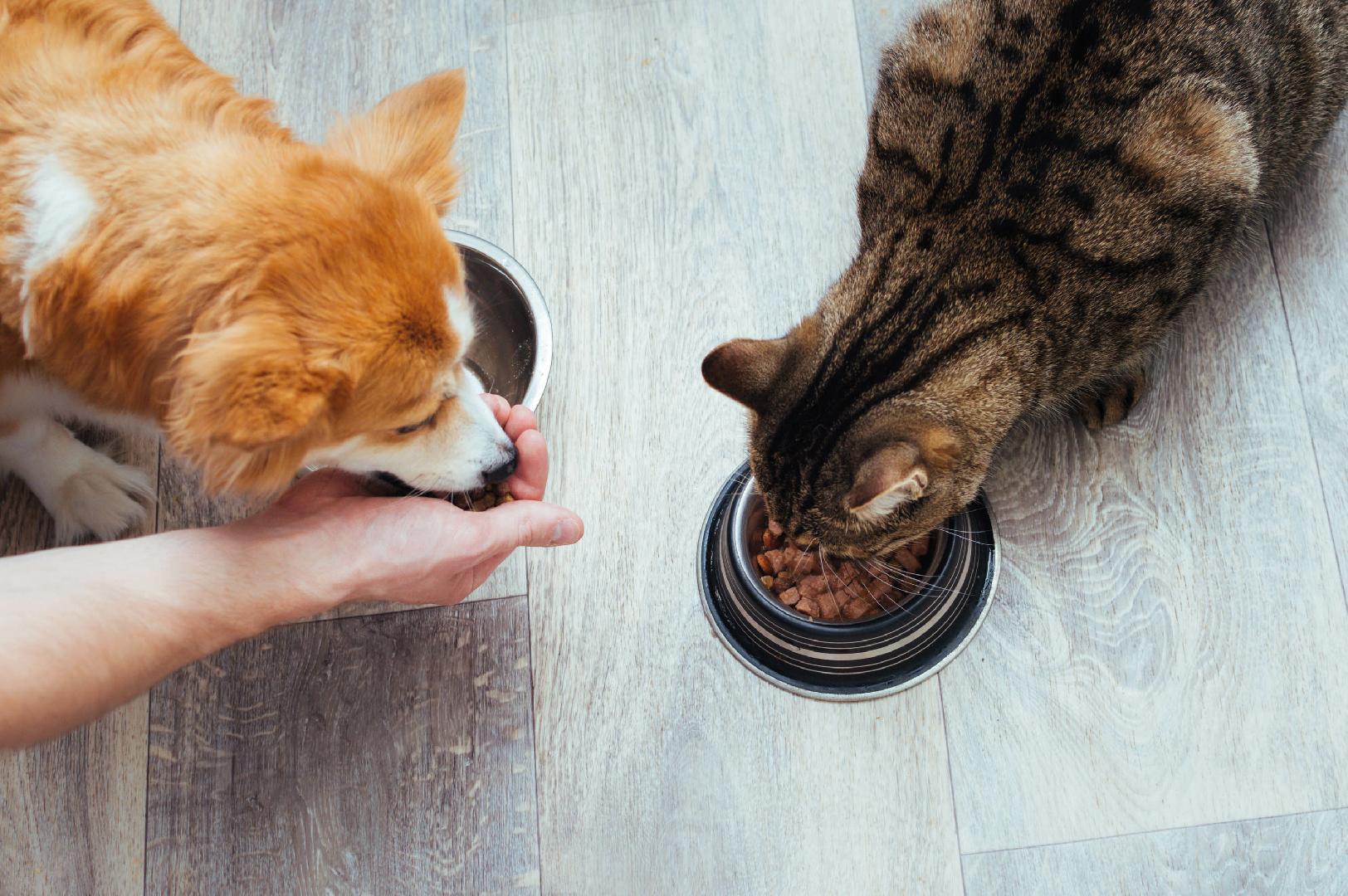 Trends
Trends
4+ MIN
17/12/2021
Consumer trends and their impact on Wet Food Processing technology
. Taking care of pets, especially food, is a crucial discussion. Experienced parents care about the well-being of their pet. New parents demand sustainability. They want manufacturers to care about animal welfare. Both new and experienced parents are changing the ways they meet feeding needs. Market trends Globally, the humanization of pets has received a lot of attention. The move from owner to pet parent has been a crucial and defining trend in the pet food market, even more so in developed countries. With new pet parents entering the market and many long-time owners taking more time to research the products they give their pets, there has never been a better time to think carefully about how to position the products in the market. Consumers are becoming aware of the health of their pets and are buying foods with high nutritional value in order to promote their well-being. Therefore, today they are not only looking for basic products, but also locally produced, natural, with specific health benefits and a smaller environmental footprint, including vegetarian and hybrid options. The trend of humanization has increased health awareness and has generated a demand for foods free of sugars, grains, coloring or chemical additives. Many consumers are likely checking pet food labels. With the emerging trends of humanization and premiumization, the demand for pet food is expected to grow even more in the coming years. Wet pet food With the new trends, wet food has gained an important role, as consumers look for food based on the benefits that wet food offers. Wet foods are higher in protein and fat than dry foods ... wet foods are often perceived by pets as tastier than dry foods. Also, most wet foods do not contain preservatives, so they are intended for quick consumption, unless they have gone through sterilization processes. In general, the benefits of wet food are: • Higher Moisture Content - Wet food may be a good option if your pet isn't drinking as much water as he should, or if he has a medical condition that could benefit from adequate hydration. • Palatability: wet food is often more aromatic and flavorful compared to dry food. • Satiety: wet food tends to create a longer-lasting feeling of being "full." Increased satiety is helpful for weight control • Easier to chew: Pets that have dental disease or other oral abnormalities may find wet foods easier to chew than dry foods. Global data for wet pet food Revenue from the Wet Food for Cats and Dogs market was USD 24,709 million in 2020 and will reach USD 37,833 million in 2025, with a compound annual growth rate of 5.48% between 2020-2025. South America is slower growing, but wet food growth is faster than any other category. The current behavior in the leading countries shows that this trend will have a strong impact on the continent. The projection for the next 5 years for South America shows that countries such as Brazil, Argentina, Peru and Chile will increase more than 5% in volume. Sustainable solutions for processing At JBT we offer a global solution for the processing of wet pet food. Our JBT-FTNON brand, with over 60 years of industry experience, supplies a complete pet food processing line starting with the hopper system, then extruded into ropes, steamed, cooled, and finally it is cut into standard or irregular pieces. Energy efficiency is a key element of this system, designed to be as modular as possible, using the same components or spare parts. Its easy maintenance means that cleaning times can be shortened, while there is a strong focus on achieving a consistent, high-quality result in terms of texture, color and taste. Food preservation: A key element Packaging selection can significantly influence shelf appeal and build long-term brand loyalty. Cans remain the predominant packaging for wet food, emerging as the largest segment in 2018. Cans are predominantly used for packaging cat products, with a focus on easy-pull openers that make a "pop noise" to which many cats react instantly. JBT - TwinTec, our one-piece filler / sealer, offers perfect synchronization between filling and sealing. TwinTec technology sets new standards in hygiene and food safety: long-lasting stainless steel with integrated cables that ensure easy access, perfect operation and maximum operator safety. Available with a Unifiller Filler or Vacuum Filler, this machine fills and closes cans at speeds up to 600 cans per minute. Key Element: Sterilization Container sterilization is a proven thermal processing technology that makes low acid food products (pH> 4.5) safe to consume and extends shelf life, without refrigeration, for wide and stable distribution. The Batch Retorts are all equipped with a steam water spray system, which guarantees uniform and efficient thermal processing of packaged foods, offering consistent high quality products, thanks to the excellent temperature distribution. JBT - Your Global Solution Our global network of research and technology centers allows you to work with a team of experts who ensure that your products will be processed, sterilized and packaged effectively: less time, better quality and less energy. Source: JBT Corporation
 Vegetable Origin
Vegetable Origin
2+ MIN
16/12/2021
Scoular to Begin Producing Sustainable Barley Protein Ingredient For Pet Food
Emerge was developed by Scoular to help meet the growing demand for plant-based, sustainable ingredients in pet food and aquafeed. Scoular also recently announced it has broken ground on a new 14,400-square-foot marine protein processing facility in Warrenton, Ore., that also will serve the pet food and aquafeed industries. 'Scoular is proud to develop this innovative feed product and partner with Idaho's barley farmers and pet food and aquafeed manufacturers to add value throughout the supply chain,' said Paul Maass, chief executive officer of Scoular. 'Scoular has a long history of success with our Jerome, Idaho, teams and customers, and we are thrilled to make additional investments in this region.' Joining Mr. Maass at the ribbon-cutting ceremony in Jerome were David Faith, chairman of Scoular's board of directors; Laura Wilder, executive director of the Idaho Barley Commission; and Mike Williams, city administrator of Jerome. 'Idaho is the top-producing barley state in the US, growing 37% of the nation's crop in 2021,' Ms. Wilder said. 'Scoular's new facility will bring expanded opportunities for growers, further strengthening Idaho's place as the No. 1 source of consistent, high-quality barley in the US.' Emerge, both traceable and non-GMO, is created through a patent-pending process that concentrates the protein naturally found in whole barley kernels, creating a nutrient-dense ingredient for use in pet food and aquafeed, the company said. The facility is expected to begin commercial production in January. Along with the state of Idaho and city of Jerome, key project partners include the Jerome 20/20 Economic Development Organization, Scott Jackson Trucking, Starr Corp. and Bratney Companies. In August, Scoular began construction on a marine protein processing facility in Warrenton. The plant is expected to be operational by the summer of 2022. The $12 million project is a joint venture with Da Yang Seafoods and Bornstein Seafoods and 'will create a larger supply base for our pet food and aquaculture customers,' Scoular said. Scoular said its new plants in Oregon and Idaho underscore its growing commitment to expand its presence in the pet food and aquaculture ingredient space. The company began operations at its $50 million freeze-dried ingredient production plant in Seward, Neb., in October 2020. This business segment, Petsource by Scoular, develops, procures, freeze-dries and packages whole organ meats and meat analogues specifically for pet food manufacturers. By Arvin Donley
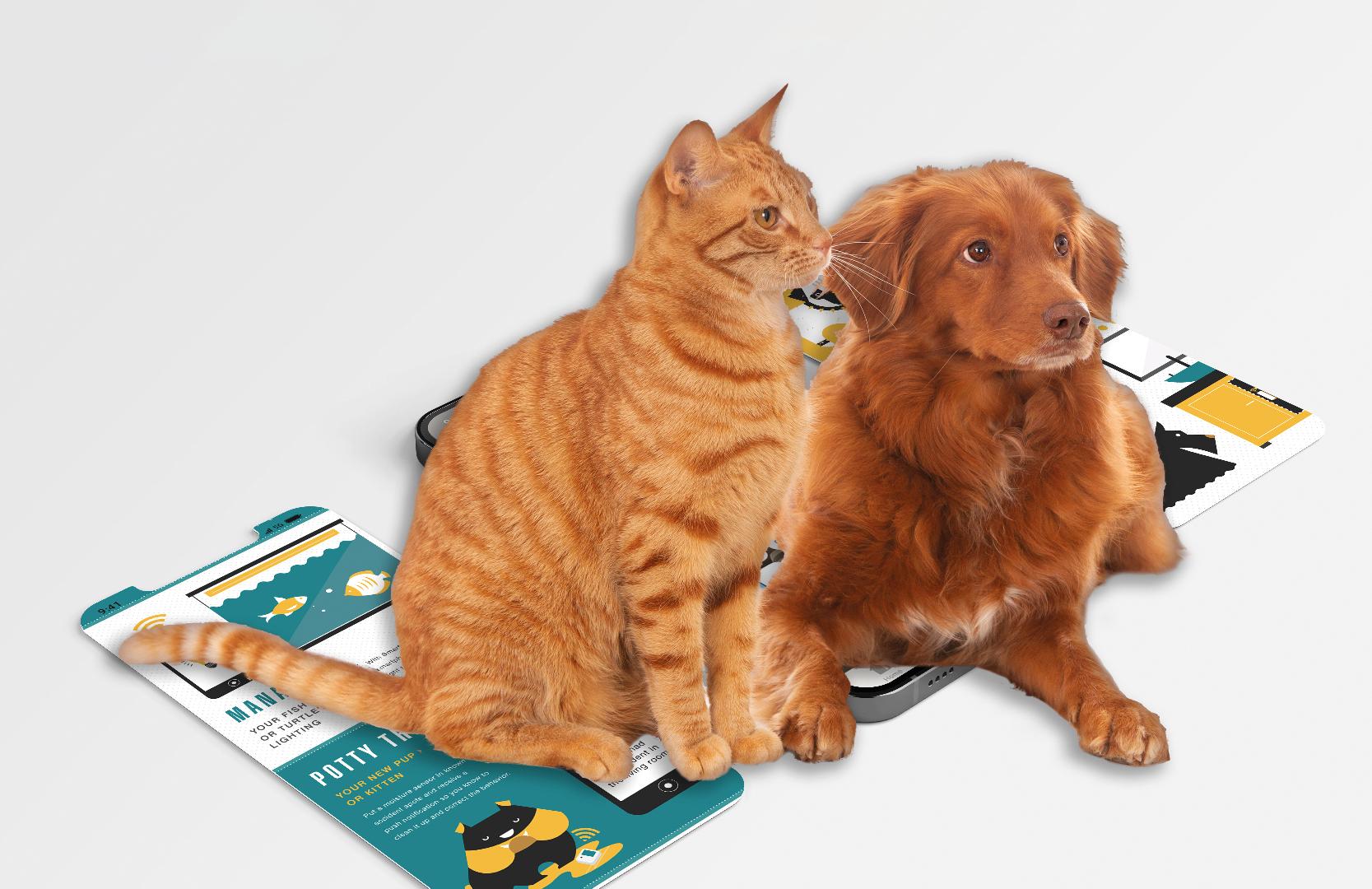 Manufacturing Process
Manufacturing Process
5+ MIN
15/12/2021
Por José Fernando Raizer
The pet industry and the fourth industrial revolution: Internet of things (I.O.T)
However, INDUSTRY 4.0 is not just about automation. In the "Smart Factory" the team interacts with others and also with the human being. It had its origins marked in 2011 by the government of Germany, with the launch of the concept of "HIGH TECHNOLOGY STRATEGY" which, through decentralized processes, use of automation, information technologies and controls, intended to make factories more competitive German women practicing the following: INCREASED PRODUCTIVITY - TO PRODUCE MORE AND BETTER, WITH GAIN IN EFFICIENCY AND REDUCING / ELIMINATING HUMAN INTERFERENCE. COSTS REDUCTION. THE FASTEST EVOLUTION OF THE PROCESSES. STRATEGIC ADVANTAGES - MORE AGILITY TO ANTICIPATE NEW TRENDS. The trend is that there will be a reduction in manual tasks, and certainly a change in the profile of Factory 4.0 employees. THE PROFESSIONAL NEEDED FOR INDUSTRY 4.0: Multidisciplinary and restless With self-learning initiative New labor relations: relaxation of labor laws Gig economy': self-employed workers Technical knowledge Emotional intelligence Analytical view Adaptability We can exemplify and try to summarize what "Industry 4.0" is using the figure of a pyramid with 6 Levels or levels, ranging from Level 1 - FACTORY FLOOR - CONTROL, ACTIVATION, AUTOMATION AND TELEMETRY, to Level 6 - Interaction with the ERP, which is the management software of the company, as a whole. There are six levels of interaction, starting at the Base (LEVEL 1) with "Drives, Instrumentation and Telemetry", which provide data for LEVEL 2 - Monitoring, Control and Production Operation, and which together with the inputs of the SOPs and Regulations The instructions establish quality assurance and service (LEVEL 3). LEVEL 4 (CERTIFIER REGULATIONS) does (record-evidence) automatically everything that external Certifiers require, practically eliminating paper records. LEVEL 5 is the monitoring of the Plant that produces the information to CONTROL (Act on) the conditions that result in certain desired Performances: KPI: key performance indicators. OEE - Overall Equipment Efficiency (OVERALL EQUIPMENT EFFICIENCY / Effectiveness). OPE - General effectiveness of the process (EFFICIENCY / GLOBAL EFFECTIVENESS OF THE PROCESS). DMS - DOWNTIME MANAGEMENT SYSTEM - Essential to establish the General Efficiency of the equipment. Over time these acronyms will disappear ... don't worry ... I don't want to take the charm off these beautiful new made-up acronyms, but these 4 performance indicators have already been included in REPORT 613 by Ralston Purina Company for over 70 years. Those who are reading this article and during their career had to complete Reports 613 (General efficiency of equipment, processes and lost time and their causes); Report 61 (Hour H.); Report 406 (Maintenance) and Report 21 -Security, but you know what? ... we didn't have internet and the level of automation was non-existent ... batch and manual dosing, with push buttons. As instrumentation in the process, we had rotating levels, the frequency converters had not yet emerged; instead we use variable diameter pulley belts. The Internet in the early 60s and 70s was still very far in the future, machines did not communicate with each other and neither with us ... and that is why we produced a lot of paper. LEVEL 3 that now shows the pyramid in the illustration (Quality control and assistance to IN) were made with consultations to the "IP" = Internal Procedure); Quality control manual; Engineering and Accounting Procedures Manual. Four stacks added together would form a stack almost half a meter high ... I can't forget to also mention the Standards for Ingredients and Finished Products, and the Complete Sales and Distribution Manual ... But I must sadly point out that despite having Ethernet in the factory, the vast majority of small and medium-sized PET factories do not even have these Operation Manuals, limiting themselves to the mandatory GMP Manual. Forgive me for this "back to the past", but today it is much easier to put the factory in "Industry 4.0" mode. It's just a matter of wanting to do it. Returning to the indexes: OEE- (Overall Equipment Effectiveness) Overall effectiveness of the equipment: It is the measure of 3 factors: AVAILABILITY PERFORMANCE QUALITY Availability: is the amount of machine uptime during a scheduled period (availability = uptime / scheduled time) Quality: is the number of good quality units produced (without rework or defects) divided by the total number of units produced during a scheduled run. (quality = good units / total units) Performance: is a measure of the performance of the machine in relation to its design capacity. The equation to calculate the OEE is: OEE = D x Q x P Still at level 5 of the pyramid: DMS (downtime management system) - (Lost time management system) - It is part of the "OEE" - Collect data and help identify the causes of production inefficiency. KPI (KEY PERFORMANCE INDICATOR) - (INDICATOR - PERFORMANCE KEY) The main function of a KPI is to measure the performance of A SECTOR, A COMPANY OR A STRATEGY. What is the difference between KPI and metric? Despite the similarity, do not confuse KPIs with metrics (MEASURES). Metric is everything that can be measured, metrified. In other words, this is data that may or may not be relevant to your business decision-making process. These data, by themselves, do not indicate whether an action or strategy is achieving the expected results. CHANGE ALREADY HAPPENING ... From "General Equipment Effectiveness" (OEE) to General Process Effectiveness (OPE = General Process Efficiency or EFFECTIVENESS). The OEE is designed to present a picture of the performance of the machines, the OPE broadens the perspective to explain what is happening around the machines. Fundamentally, the PEO is responsible for one element that is missing from the OEE: the human being. What is the OPE? (OPE = overall EFFICIENCY of the process) The OPE is responsible for the full range of variables and steps that affect a manufacturing process; It is an end-to-end account of the value stream. Basically, the OPE integrates the data of the machine with the responsibility of what happens around the machines. It is a representation of human action and machine performance. Previously, one of the tools used for this was the MTM -Methods, Times and Movements ... as you can see, nothing very new in the 'Eastern Front ... (mention of the First World War). It is obvious that if we have implemented the 5 LEVELS of the pyramid, then the communication with the ERP (Company Control Software - Level 6) will bring fantastic benefits in the administration of the business. Purchasing and logistics will have timely information for all decisions that contribute to the competitiveness of the Company; The results of the analysis will be ready for the Formulator immediately after they have been obtained (Low Cost Formulation); Inventory Control / Accounting will have a better ability to contribute to customer service logistics in addition to facilitating the delicate task of "Pricing" and the resulting control of contribution margins by product .... If your company is not yet on track to achieve Industry 4.0 status, I suggest you step up. HUG AND SUCCESS!!! Source: All Pet Food
 Market Information
Market Information
2+ MIN
14/12/2021
Petco Welcomes Nike Executive as Board Advisor
Petco appointed Iris Yen as an advisor to its board of directors. As part of her appointment, Yen will also serve as a board observer, immediately providing expertise in digital, brand building, retail and strategy, as well as an avenue of continuity as Petco seeks directors when seats become available in the future.
Yen currently serves at NIKE, Inc. as vice president, global Nike direct digital commerce. In this role, she oversees Nike's digital portfolio around the world, which includes platforms such as Nike App, SNKRS, Nike Run Club, Nike Training Club and Nike Membership. She is focused on creating new value for Nike and its consumers by crafting engaging experiences and digital capabilities that drive affinity for Nike while encouraging people to participate in and share their passion for sport.
Previously, Yen served as the vice president of greater China Nike direct digital commerce, achieving 50 percent annual growth and profit expansion through the launch of Nike App, Livestreaming, and Tmall and WeChat partner expansion programs. She joined Nike in 2016 as global vice president of strategy, where she led the enterprise strategy to accelerate Nike's consumer direct offense through innovation, speed, and creating direct-to-consumer connections. Yen joined Nike from Gap Inc., where she held multiple leadership roles, including serving as Gap's vice president of corporate strategy. Ms. Yen has also served on the Nike Foundation's board and Gap's political action committee, acted as the executive sponsor of Nike's and Gap's Asian-American networks, and is a Stanford Women on boards member.
"Digital expertise and leadership are critical to Petco's success as we continue enhancing and growing our differentiated omnichannel pet care ecosystem," said Ron Coughlin, CEO and chairman of Petco, "Iris brings a deep and proven track record of driving impressive digital and e-commerce growth for iconic consumer brands. Her background and leadership are perfect complements to the existing digital, retail, and transformational experience of our existing board members. We're so pleased to welcome her to the Petco family."
by Pet business
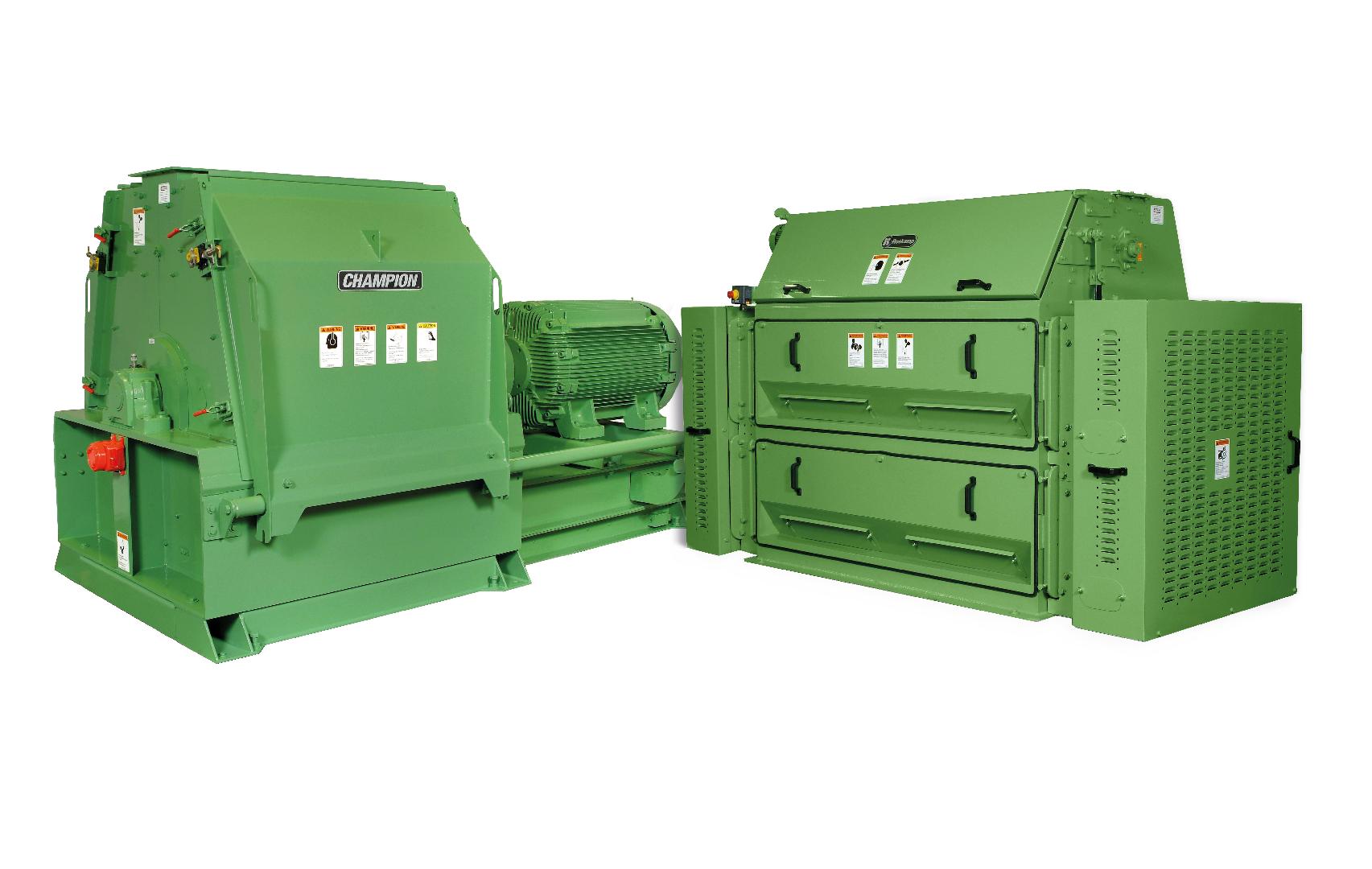 Grinding
Grinding
3+ MIN
13/12/2021
How can I grind more efficiently and with a smaller particle size standard deviation?
Series milling, in the simplest terms, is size reduction achieved in steps or stages. It usually incorporates two grinding machines: hammer mills and roller mills. The primary goal of step milling is to reduce the cost of producing one ton of finished ground product. Additional benefits may include better control of particle size distribution (more uniform grinding with fewer oversized and less fine particles), less heating of the product and subsequent loss of moisture, a reduction in maintenance cost per ton of ground material, potentially a finer finished product, and greater flexibility in the grinding circuit. Step milling process can employ two hammer mills, just one hammer mill and a roller mill, or two roller mills. If you want to use a single machine, your step milling circuit will involve batch processing, that is, grinding a coarse batch, resetting the machine for finer particles, and processing again. Circulation grinding can be an alternative way to stagger grinding without the use of multiple equipment. You can use multiple sets of rollers in the roller mill, or a continuous operation of a roller mill or hammer mill with a screening stage to return oversized materials for reprocessing. Circulation grinding offers the potential to reduce energy and improve particle size control, but does not add more flexibility than the traditional two-machine grinding system. Step milling or traditional series milling also allows the flexibility to continue milling product while maintenance or part replacement is performed on the other equipment. A second approach, and one that is employed in various feed mills, is the use of two "series" mills, one that performs a pre-break / break and the second that achieves the desired particle size. Advantages of this type of circuit include lower grinding costs, finer finished products, a more uniform particle size, and a greater capacity of the total grinding system. The main disadvantage of this type of system is the higher capital / investment costs required to purchase and install. In most cases, the investment in the additional equipment pays off in 6 to 12 months with the energy savings of the grinding circuit alone. Additional benefits, such as increased life of wear parts, spare parts, and equipment life, are a huge plus in addition to such energy savings. If you want to further improve your energy efficiency and reduce operating costs, the recommendation is to screen between stages: removing larger materials before secondary milling or reprocessing these large materials to the initial equipment. Using two roller mills and one screen can allow you the flexibility to remove out-of-spec product and increase throughput between machines. The step milling approach produces this energy reduction, which means that less energy is required because the materials are reduced more gradually over a slightly longer period of time. By doing the same amount of work (grinding) over a longer period of time (two or three gradual grinds instead of an instant grind), the total power requirement is reduced. The roller mill offers significant energy savings compared to a hammer mill when processing material in the coarsest particle size ranges. With these characteristics, the use of the roller mill as a pre-breaking or pre-breaking device can offer substantial savings in a typical grinding circuit. This combination of finer feed and higher hammer mill efficiency not only reduces energy cost when grinding, but also reduces other operating costs, including maintenance and parts. In some cases, existing hammermills require increased capacity; the addition of a roller mill can increase the hammer mill capacity by as much as 40 to 50%, without changing the average particle size of the grind. Source: CPM
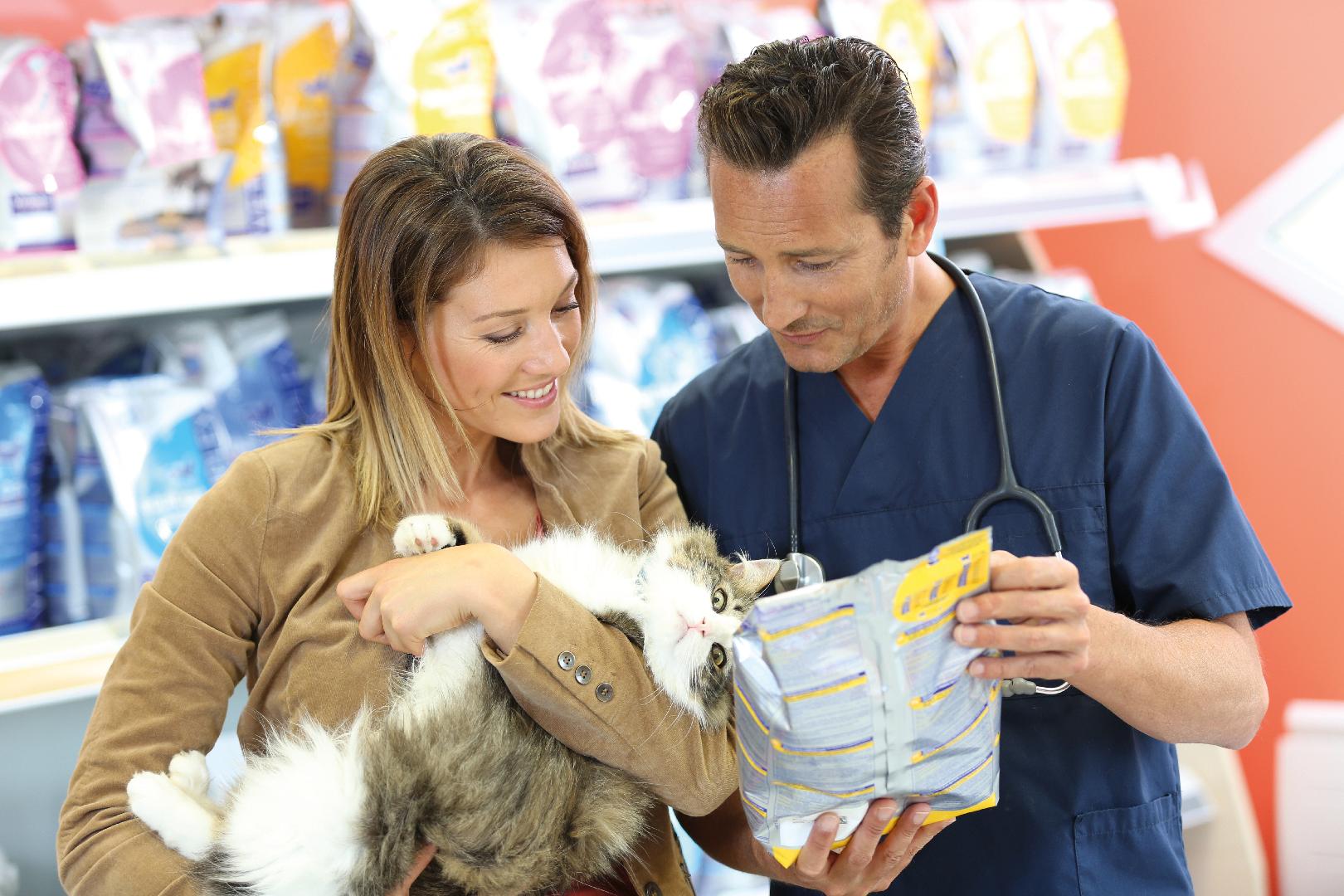 Trends
Trends
5+ MIN
10/12/2021
Por Diana Mercado Cisneros
Create a successful marketing strategy for the Pet Food Industry
What elements influence decision making when making a purchase? A good marketing strategy First steps to generate a successful strategy First of all, you have to think about your SMART objectives and have them very clear, that way you can create your strategies with a common goal. Whether you are looking to increase your sales, improve your web positioning or optimize your presence in social networks, to make your efforts work you need to establish them in a way that they are specific (S), measurable (M), achievable (A), relevant (R ) and on time (T). Now, let's review another very important point: the 4 P's - Product, price, promotion and place. The product, as its name says, is what is going to be offered, what your company will contribute to its customers. Pricing, is one of the most complex marketing decisions, involving multiple factors such as manufacturing costs, markup, demand, competitive positioning, potential audience purchasing power, and many other characteristics. In this part, aspects such as payment methods or discounts are also taken into account. The promotion, this part includes all the communication actions that your company will carry out to publicize the products in order to increase sales. This is where all the advertising strategies, public relations, sales tactics and of course, the marketing would come in. Point of sale or distribution, refers to the different channels through which your products will reach consumers. If it is planned to put the products in a specific store, if it will only be available online or if it will be a comprehensive sale. This point covers aspects such as access, storage, transportation management or inventories, in addition to the customer experience. Increase your sales using digital marketing When you are going to develop your strategies remember to keep your SMART objectives in mind, based on these some tactics may be more effective than others. Content marketing This refers of creating content of value for users in such a way that they receive something in return. For example, you have seen that most web pages today have a blog section and also out of nowhere a pop up or an advertisement appears that offers you a free resource, in return you have to leave your email but there it is the detail. Today's consumer is not going to give you their data without receiving anything in return. In the case of pet food brands, they are creating content that will give the user knowledge about caring for them or they run raffles in which contact information is requested to participate in a raffle or to receive a discount coupon. In this way, brands make sure to attract prospects interested in their products. The Petco company knows the importance of content marketing and created this promotional so that by simply requesting contact information, they receive a discount on the first purchase. Email marketing Through emails you can create a personalized communication channel, based on the needs of your subscribers. Email marketing is a tool used to create specialized databases, either for customers who have bought from you once, those customers who buy from you frequently and for those who have never bought from you, but have shown interest. Depending on how segmented your database is, you will be able to create the campaigns and adapt it to the needs of your clients and encourage them to act in the way you want; whether it is buying a product, accessory or taking advantage of the discounts and promotions that you have created for them. These campaigns can be run whether you are a pet food manufacturer or distributor. In the case of manufacturers, making and sending special promotions for distributors and others for customers turns out to be a good tool to increase sales. Social networks With this tool you not only promote, you can interact with your customers in order to know what they want, what they need, as well as brands or distributors of pet food for them. In fact it's an excellent platform to make everything go viral, make campaigns that involve both pets and owners and publish the results on social networks, they are the perfect way to make your followers feel that there are humans behind any brand. It is very important that you know the type of audience, because social networks work prety well for certain sectors and not so well for others; Develop a strategy adapted to your target market since each audience is different and you must create content focused on your target audience. Companies like Kantek Premium are aware of the great capacity that social networks have to humanize a brand and get closer to its audience. Recently, there was a landslide and collapse of a fence at an animal shelter in Mexico City, the company began to share and request support for the shelter through its networks. It is also possible to broadcast En Vivos and create valuable material for followers, in such a way that your company and your product are positioned as opinion leaders. As Petco does, who periodically make this type of content for their audience and generate very good results. Complement your strategy with conventional marketing In addition to the digital ones mentioned above, it is important to complement with some conventional tactics. ● First of all, don't forget to participate in pet food industry events such as: PET and VET Business Fair in Brazil, Pet Food Forum 2021 in Mexico. Some will be virtual due to the current situation. ● Sponsorship of events. You have to sponsor non-profit events, or congresses, as well as pet shelter or organization dedicated to the care and protection of them. ● Conventional advertisements in newspapers, television, radio or Online platforms. You can choose one or two of these types of strategies and complement your digital tactics in such a way that you achieve your goals. It is time to apply what you have learned Whether you're a pet food manufacturer or distributor, developing a marketing plan will give you direction and achieve your goals. If you want to increase sales or retain your customers, marketing tactics will help you achieve it. by All Pet Food
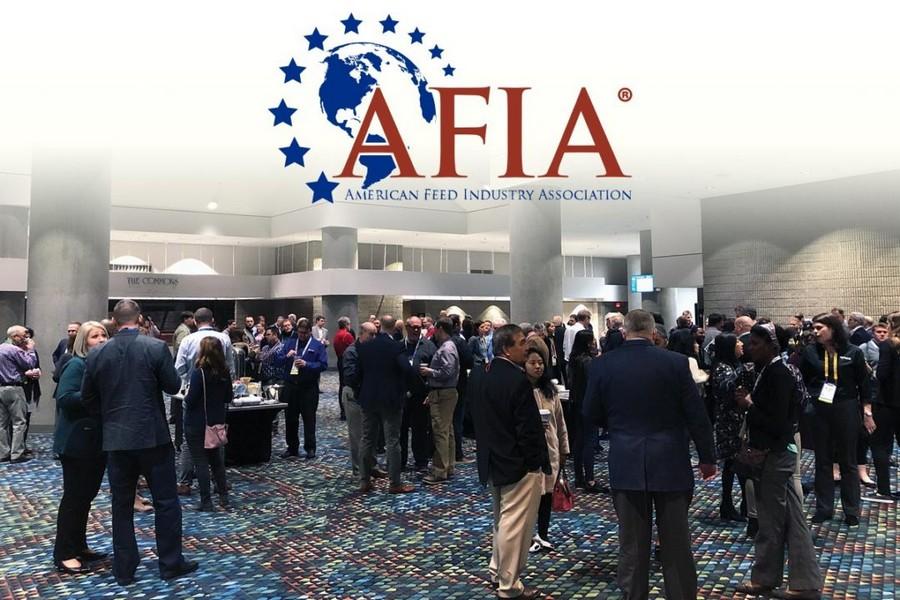 Market Information
Market Information
2+ MIN
09/12/2021
What to expect at AFIA’s 2022 Pet Food Conference
The event takes place in conjunction with the International Production & Processing Expo (IPPE) in Atlanta. IPPE runs from Jan. 25 to 27 and the Pet Food Conference is Jan. 25 from 7 a.m. to 3:30 p.m. at the Georgia World Congress Center in downtown Atlanta. The conference offers a full day of industry leaders speaking on important topics that will impact pet food and treat manufacturers, industry suppliers, regulatory bodies and allied academic communities now and in the future. Session speakers include Erin Mies, People Spark Consulting; Matt Frederking, Mid America Pet Food; Thembi Machaba, Freshpet; and Nathan Bingaman, D1 Resources discussing human resource challenges and strategies for the pet food industry. Carolyn Kennedy, EAS Consulting Group, will address pet food labeling regarding human grade versus non-human grade brand claims. Three separate presentations will offer insights on the regulatory landscape. Gina Tumbarello, senior director of international policy and trade for AFIA, will share some of the support available for those exporting pet food. In addition to an update from Association of American Feed Control Officials (AAFCO) President George Ferguson, Dave Edwards, Ph.D., director of the Division of Animal Feeds, US Food and Drug Administration, Center for Veterinary Medicine will provide a federal regulatory update. And tackling a complex topic increasingly in the news, Col. John T. Hoffman, Food Protection and Defense Institute, and Todd Renner, Federal Bureau of Investigation, will share best practices for cybersecurity and prevention tips for ransomware. In addition to several networking opportunities throughout the day, three graduate students will be presenting papers on emerging issues in the pet food industry, and Scott Baker, SEM Minerals, will have the honor of presenting the AFIA Friend of Pet Food award to this year's recipient. For more information and to register, visit the AFIA website at www.afia.org. By AFIA
 Market Information
Market Information
4+ MIN
08/12/2021
The Pet Food Industry in Mexico 2021: Trends, forecasts and stats
In this article we review the Pet Food industry in Mexico and tell you about its current situation and future predictions. In food consumption, Latin America ranks second in the world, reaching a sales amount that exceeds 10,847 million dollars. The only region that surpasses it is North America, with $ 23,244 million in annual sales. In 2018, the global pet food market was valued at $ 87.08 billion, with a CAGR of 5.4%. The following year, in 2019, it was reaffirmed that North America is the largest geographic segment of the market, with a share of around 39.2% in a global comparison. This means that most of the industry's income is generated in the United States; in 2019, they reached 29,876 million dollars. North America, the largest market for pet food, is followed by Western Europe, Asia-Pacific, Latin America, Eastern Europe, the Middle East and Africa. The pet population in all of these regions is growing at a very rapid rate. Despite the economic crisis caused by COVID-19, the pet food industry is one of the privileged that has had a good performance, and even growth, during the last year. Regarding the pet industry in Mexico, we can affirm that the country has also experienced exponential growth, sustained mainly in the last 10 years. This is mainly due to the increase in awareness about the care of companion animals beyond the classic nutritional aspect. This growing global trend of "humanization" of Pets has reached a new level in Mexico, where it is possible to find even restaurants where dogs are more than welcome: they are, in fact, the main diners. From a socio-economic point of view, the changing economic and social situation of the country is the factor that most drives the pet food market. A clear example is the rapid growth of the middle class, of approximately 40,000,000 inhabitants, which, together, along with the increase in urbanization, makes the market grow exponentially. In addition, the preference for having fewer children also leads to a greater appeal in having a Pet. Pet Food in Mexico, in numbers Mexico is the second largest country regarding domestic dogs in the world. The first place is Argentina, and the third is Brazil. It is estimated that in Mexico there are 27 million dogs; 35% of them eat balanced feed; In the case of cats, which are about 8 million, 19% of the total are fed balanced food. This has encouraged the development and manufacture of organic and premium food. The cost of this type of food is estimated to be at least 20% higher than the average market price. In 2017, dog food sales grew by 7% in value and 8% in volume, which is equal to 30.5 billion Mexican pesos and 892,073 tons of product respectively. Wet food was the one that saw the highest growth in value in 2017 (9%). During that same year, the consumption of food for domestic animals in the country was almost 954,000 tons, which meant an increase of 6.5% with respect to 2015. This indicator corresponds especially to the increase in awareness of the importance of of the quality of the food and its nutritional value. In Mexico there are more pets than children under 9 years of age, who barely reach 23 million (according to INEGI). In fact, 80% of the Mexican population owns at least one pet, with 64% opting for dogs. In 2017, Mexico had a turnover of 2 thousand 78 million dollars in pet food, which is 112% more than the 980 million of the item of baby food, according to data from Euromonitor International. By 2019, the market was valued at 2,343 million dollars. Currently, the baby-dog boom has far exceeded, doubling, the income of the baby food industry. The main brands in the Mexican market are Pedigree and Whiskas, from Mars; Nestle's Purina Dog Chow; Winner, from Neovia; Pal, from Mars; Nupec, of New Technologies in Food; Purina Pro Plan and Purina Champion, from Nestlé; Perfect Fit, by Mars, and Mainstay, by Nestlé. The highest sales come from major retail chains such as Walmart, Sams, Soriana and Costco. Forecasts for the Pet Food market in Mexico As we have seen, the pet industry is growing at an accelerated rate in Mexico. As for the global pet food market, it is estimated that it will experience growth of up to 98 billion dollars within the next 5 years, towards 2024. This is mainly due to the increase in pet owners around the world. In fact, the market value is expected to increase to $ 2.9 billion by 2023, growing annually by 6.2% (CAGR 2019-2023) according to Statista. This increase corresponds, to a large extent, to the increase in the acquisition or adoption of pets, which, in turn, corresponds to an improvement in the purchasing power of the middle class. It is expected that, as in recent years, wet food will show the greatest increase in consumption, reaching for the same year an average annual growth of 5% and 8% in volume, which translates into 41.4 one billion Mexican pesos and 1.4 million tons respectively. The pet food market of the whole LATAM region is expected to reach 11.69 billion dollars by 2024. The Pet Food Industry is growing rapidly, in Mexico and around the world, due to various factors. One of them, as we have seen, is the increase in the purchasing power of households and the late decision to have children. Another trigger for the increase is the reduction in the mortality rate of pets, given the increased awareness of their general and nutritional well-being. Mexican companies must develop a great vision and execution of their businesses if they want to maintain and grow in a sector that attracts, due to its forecasts, more and more investments and companies willing to innovate and deliver to consumers what they want to feed , take care of and pamper your Pets. By: All Pet Food
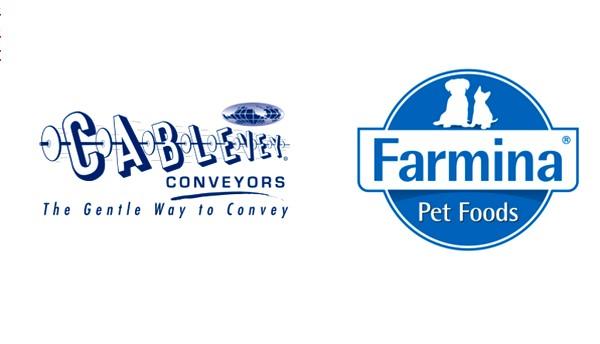 Conveying Systems
Conveying Systems
3+ MIN
07/12/2021
Farmina & Cablevey: Together, striving for excellency!
Guided by genuine care for animal well-being and by acknowledgement of the unwavering love and support they provide as pets, Farmina came to be as a result of Dr. Francesco Russo's lifelong passion and craft in 1965, in Italy. The company has since dedicated its resources and energy to developing its narrative in the way most suited to the values it embodies. Built upon extensive and meticulous research, Farmina offers a wide array of options when it comes to animal nutrition, including specifically balanced formulas meant for professional dog and cat breeders, a niche which involves the highest levels of precision and planning. Aside from that, they offer extensive customer support in the form of a consultancy service that creates specific dietary plans for different pets. Farmina's accolades really speak for themselves: from published articles in Cambridge's British Journal of Nutrition and flourishing partnerships with world-renowned animal care institutions such as Napoli's Federico II University of Animal Nutrition and Feeding, it becomes clear that Farmina is a name of high regard. With a highly-qualified group of specialists, veterinarians, zoologists and animal nutritionists, coordinated alongside the most structured research methods and highest-quality available equipment, success becomes only natural. In a process with as many variables as pet food production, what sets Farmina apart from the competition is not a single factor, but rather several different factors working together. One of these elements is the continuous improvement of technology and plant infrastructure; as the product can only be as good as the equipment allows. In their tireless striving for excellence and improvement, Farmina came upon another company regarded for their striving, but in the field of material transportation: Cablevey Conveyors The Cablevey tubular drag conveyor is an essential element to any high-standard food processing operation, as its cable and disc technology is capable of transporting any kind of material with virtually no breakage or waste. It can be specifically fitted to any product or plant layout, is highly adaptable, produces a very low amount of sound, runs on a small energy consumption, has very little downtime due to simple and sparse maintenance, is self-cleaning and completely sealed-off from foreign contaminants in the environment. With a working capacity ranging from 3,000 lbs/hour (1,361 kg/hour) to up to 80,000 lbs/hour (36,267 kg/hour), it can move material of any granularity, frozen, frosted, coated, delicate or powdered with food-grade cleanliness standards, all whilst reducing particle breakage to numbers below 1%. Located in Oskaloosa, Iowa, Cablevey has been in the business for almost five decades and works with over 900 types of products in 66 different countries. Many of the world's largest food companies have chosen Cablevey due to its high efficiency, adaptability and food grade operation. Brands such as Nestlé, Premier-Grandfoods, Affinity Special Dog, Royal Canin, Unilever, Purina, Starbucks, Hercosul, JDE and many others all use Cablevey Conveyors. All these companies have high standing among their respective fields, and this is a trait they share with Farmina. The levels of excellence achieved could only be reached through the careful selection of materials and equipment. A globally-renowned brand name is born when a company takes it upon themselves to create the best product they possibly can, sparing no resource or effort. The search for quality should be tireless, and that is both the most essential component and greatest challenge of the process. Farmina's sheer dedication to their craft is what really makes them unique, placing them among some ot the greatest brands of all time. by Cablevey Conveyor Source: All Pet food
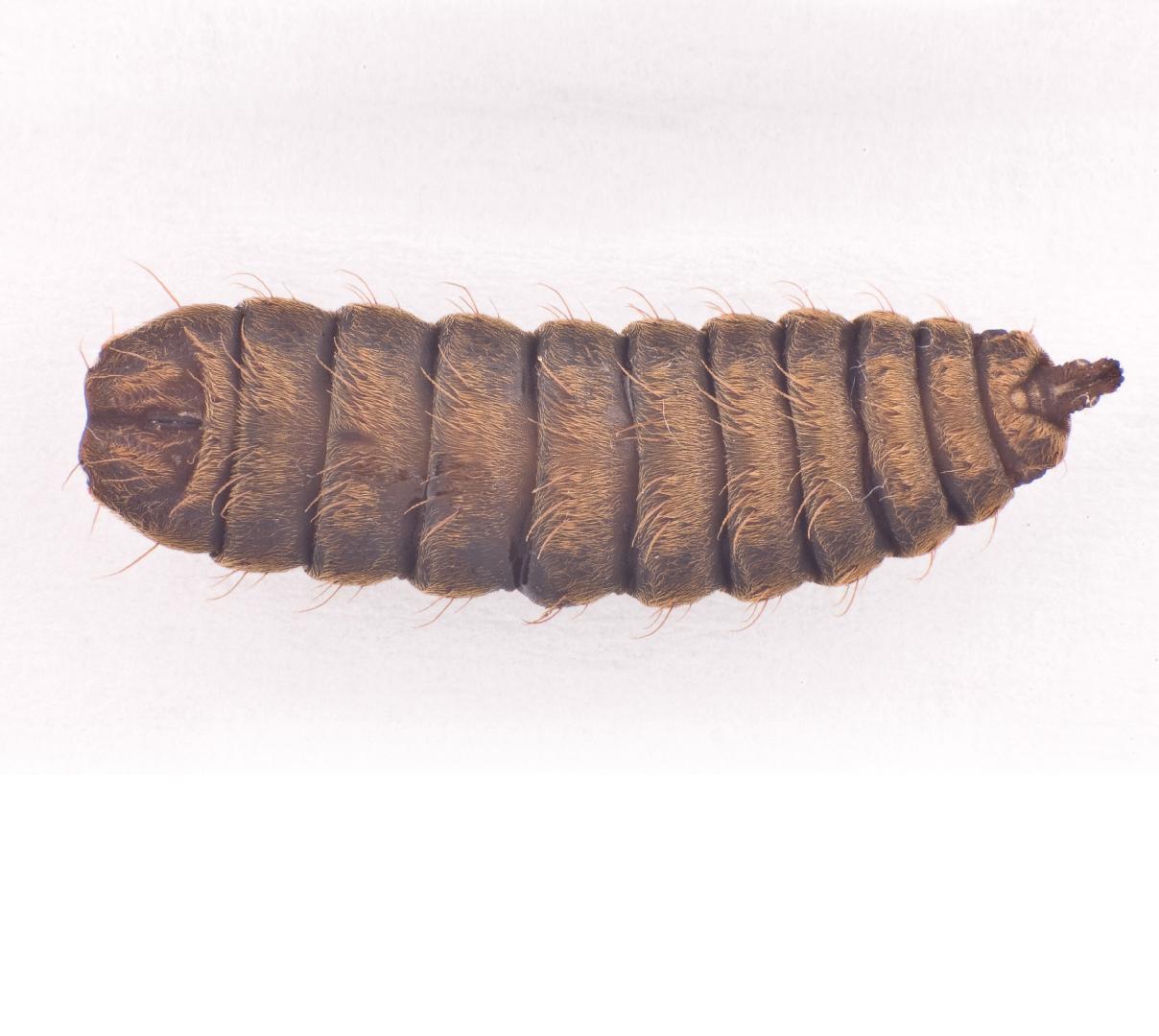 Trends
Trends
7+ MIN
06/12/2021
Emerging protein sources for the pet food industry
The impact that our civilization has on the functioning of the environment is increasingly evident and less debatable. Although there are still niches of controversy and rejection of the idea that human development is responsible for changes in the functioning of the climate and global processes of the planet, a large part of the population has already adopted this idea as true and has also taken measures concrete to mitigate the footprint that each of us leaves. The vision of this crucial issue for society is strongly influenced by age range, so young people are not only more concerned about this issue and less likely to deny it, but also take the lead in incorporating concrete behavior changes that modify their consumption habits. There are several very marked trends in the new generations regarding their way of facing consumption to meet their needs, one of the fastest growing is to replace the consumption of products of animal origin with alternatives, mainly vegetables. This has generated a whole range of profiles that can be classified into one of these groups. Flexitarians: they admit the consumption of meat and animal products in a moderate and sporadic manner, mainly on social occasions, they give priority to the consumption of vegetables and vegetable derivatives. They represent approximately 16% of the global population and 85% are under 60 years of age. Vegetarians: they do not consume meat, but they do consume some derivatives such as dairy, eggs and honey. About 10% of the world's population is vegetarian, India alone has over 350 million vegetarians. Vegans: do not consume any type of animal product, including leather and events where animals are used. They represent 3% of the world's population. Regardless of the specifics of each group, together they represent 29% of the world's population and share these common traits: 60% of the three groups are under 44 years of age. More than 70% carry out wellness activities such as exercise and meditation. More than 60% carry out activities related to caring for the environment, including preferential purchasing from socially responsible companies. More than 40% prefer to spend money on experiences rather than goods. Now, how does all this impact the pet food industry in a concrete way? On the one hand, the strong trend towards the humanization of pets makes people transfer their habits to their pets, on the other hand, the decrease in meat consumption brings with it a decrease in the supply of by-products of animal origin, generating uncertainty about protein supply in the immediate future. The end result is that a constant trend has been generated in recent years towards the development of vegetarian or vegan products for pets and the incorporation of alternative protein sources, for the development of new products. Perhaps the most consolidated trend regarding the incorporation of new protein sources is the so-called Grain Free, in which in addition to replacing the starch in cereals, traditional proteins are also replaced by alternatives that come from legumes and vegetables. But this trend is not necessarily vegetarian. If it is important to highlight its presence because it has already generated a permanent market space and where alternative ingredients and formulations have already made the way to break two great barriers, the cultural one for humans and that of palatability for pets. When developing vegetarian pet food alternatives, the key point to be resolved is the protein source, which must not only be concentrated, but also must have a complete amino acid profile for the nutrition of dogs and cats. There are currently three main categories of alternative proteins available Established and available sources: soy, pea, lupine, potato, wheat and corn protein. They have a robust industrial chain with sufficient scale to supply the needs of the human and pet food industry. Due to their scale, they have competitive prices and are constantly available without seasonality or breaks in market stocks. Almost all these proteins are the result of a process of separation of the components of these vegetables. In the case of soybeans, what is most interesting is its oil, and the protein is a by-product of this separation; in the case of corn, wheat and potatoes, what is of interest is their starch and proteins remain as an important secondary product. In the case of peas and lupines, both starch and proteins are important products for the meat processing industry. They have large cultivated areas, the vegetables have been genetically improved by natural selection or genetic engineering to have very high yields, the production technology is highly developed and the consumption of water and the use of chemicals in these plant species have been optimized. They are already present in most pet foods on the market today. Emerging protein sources with limited availability: purified proteins from chickpea, lima beans, lentils, rapeseed and beans. They have fewer cultivated areas globally, tend to be more environmentally friendly crops and are often certified organic. Its industrialization chain is not fully established but more and more plants are adding installed capacity to process and separate proteins, starches, fibers and oils from these vegetable sources. In general, the production of these proteins is specific to the production of proteins themselves, and not a by-product of a larger-scale industry, so their prices are above well-established sources. While they have volume limitations on a global level, they can be counted on on a regular basis for specific uses, the global supply of pet protein cannot yet be solved by relying on these emerging solutions. They usually add additional interesting benefits for the environment, such as increasing crop diversity, allowing crop rotation, many of them are free of genetic modifications (but this also reduces their yield) and also add a quota of local availability of protein sources that reduces the incidence of freight and transport energy costs. Emerging sources of alternative proteins: Isolated proteins from Quinoa, Sunflower, Algae, Duckweed and Insects (crickets and fly larvae mainly soldier). As they are novel sources of protein in general, they have already been established with criteria of circular economy and careful availability near the source of consumption to avoid emissions and unnecessary energy costs. On the other hand, almost all of them do not compete directly with human food, both in their final use and in the way they are grown. In the special case of insect proteins, although they are not plant based, they can be considered friendly for the development of vegetarian products. All these novel sources have smaller and underdeveloped cultivation areas, they also have industrial chains that are not fully established and a large part of them are being introduced to the human and animal food market, so some cultural barriers for their consumption must still be broken, on all insects. However, they have very interesting prospects for long-term sustainability. Duckweed is an aquatic plant and both it and algae can be grown in water without occupying land areas. Both have high crop yields, close to 20 tons / ha / year for duckweed and 40 tons / ha / year for algae. The amino acid profiles are complete and also, in the case of algae, they have a high concentration of omega 3 and 6 fatty acids in their fat. A major disadvantage is that they are only suitable for hot and temperate climates. Quinoa has the advantage of being adaptable to many types of climates and naturally having high yields, it also has a very complete amino acid profile and a high protein content. Culturally it is already fully accepted by the population and is even considered a superfood and a beneficial product for food. Analyzing in detail the case of protein from insects, it should be noted that from the point of view of sustainability they are the ones that have the best perspective. Insects can grow by efficiently consuming organic waste from other industries, insect meal is low in fat and very rich in proteins with a full amino acid profile. Far fewer resources are used to produce a ton of insect meal than to produce a ton of animal meal (less water, less energy, less acreage, and fewer emissions). The insect protein industry was already born under the concept of circular economy, so it tries to solve all the problems related to its relationship with the environment during its scaling up. Finally, we will briefly review the challenges posed by the development of pet foods based on alternative protein sources, mainly plant based to offer vegetarian or vegan alternatives to consumers. Regarding nutrition, it is necessary to make sure that the protein sources have all the essential amino acids for dogs and cats and if not, pure supplements should be used, mainly methionine and lysine. Another technical challenge is solving the palatability of the food, since vegetable fat sources are less palatable to pets than animals. On the other hand, the current flavorings are all based on the hydrolysis of animal proteins, there are alternative solutions based on other proteins, but still under development and with little availability in the local market. As in the case of human food, the change to a vegan or vegetarian diet must be monitored to ensure that the intake of amino acids, vitamins and minerals essential for the body is met. On the other hand, this type of diet does not have to be less palatable or less pleasant for both humans and pets, so the search for satisfactory palatability solutions is a highly dynamic field in the food industry since they have not yet been covered. fully meet the expectations of consumers seeking wellness, convenience and enjoyment. Fuente: All Pet Food
 Trends
Trends
1+ MIN
03/12/2021
Emotional discoveries trend: opportunities to share feel-good experiences with fur babies
This insatiable search for new culinary experiences has even transferred to pet food, allowing owners to add some fun escapism to their furry companion's meal routine. These products can also be opportunities to celebrate family or holiday traditions with the fur baby. For Millennial pet parents, it is more about identifying themselves with innovations employing their usual digital codes Discover fun pet food experiences that please pet parents and their companions. Enjoy the full article HERE By: Diana Pet Food
 Trends
Trends
2+ MIN
02/12/2021
How data can help us End Pet Homelessness
At Mars, the world we want tomorrow is one where no pets are homeless. But before we can achieve this, we first need to understand what contributes to this issue in different countries across the world. This is why we teamed up with animal welfare experts and created the first-ever State of Pet Homelessness Index. Using data from over 200 global and local sources as well as quantitative research based on attitudinal data, the Index is the first, methodological measure of pet homelessness, currently covering data across 9 countries: the US, UK, India, Mexico, Germany, Russia, South Africa, China, and Greece. Every country receives an index score between 0 and 10 (where 10 = no pet homelessness exists) based on data collected across three focus areas. The Index model also accounts for country-specific context and identifies the challenges and contributing factors that can help inform initiatives addressing this issue in each of the 9 countries. The data also reveals several common challenges across the nine countries: Pet–friendly housing limitations: 55% of respondents say it is difficult to find dog-friendly rental homes; 44% agree it is difficult to find a rental when you own a cat Negative perceptions of stray or shelter animals: 50% of prospective owners say they worry about the pet's history if adopted from a shelter, and 47% worry the pets are emotionally damaged. One in four think that stray animals are more likely to be aggressive The Index data also suggests that across the nine countries measured, nearly half (47%) of pet owners have concerns that when life returns to normal post-pandemic, there will be more homeless pets than ever. Some pet owners also report uncertainty about whether they will be able to provide sustained care for their pets once life goes back to normal, leading to a concern that more pets may be at risk of homelessness. Jeffrey Flocken, President, Humane Society International says, 'Companion animals are a source of comfort and unwavering affection for us, and we believe they deserve the love and care they need to thrive. I'm hopeful the Index can be used by animal welfare organizations and policymakers, pet professionals, academics and researchers to better understand the scale and factors influencing the issue and to point towards the most impactful interventions. At Humane Society International, we are ultimately aiming to reduce the time companion animals spend in shelters before finding their forever homes and prevent them from being relinquished or abandoned –and this Index will inform our ongoing efforts to do just that.' Source: Mars
 Market Information
Market Information
4+ MIN
01/12/2021
Por Luciana Chippano
Pet food in Brazil: the market situation in 2021
In context Currently, Brazil is already the world's second largest market for dog food and the third largest for pet food, behind the United States and China. The pet industry in Brazil, which encompasses Pet Food, veterinary products and accessories, hygiene and animal beauty, billed, in 2018, R $ 20.37 billion in 2018. Brazil is characterized by launching new products to the market, not only serving to attract foreign buyers to increase exports, since they are in charge of meeting quality requirements and standards, but, in turn, stimulate and raise the quality of the national industry, and the truth is that companies in the sector constantly seek to use technological innovation and creativity to develop more specialized and interesting solutions for consumers. Now, for example, one of the most important companies in the market, BRF, bought all the shares of the companies that make up the Hercosul Group, specialized in the production of pet food and expanded to Paraguay since 2019. From the company, they affirmed that this decision will allow them to be able to better satisfy the growing demand of consumers in the pet food segment, and it is that the changes happen so quickly and constantly in the sector due to the new links that are generate between people and animals that it is necessary to offer more and better options on a continuous basis. How did the coronavirus pandemic affect the country's industry? That Brazil had difficulties coping with the pandemic is no longer news; However, within our industry, it should be noted that, as in many other countries, there has been a considerable increase in the purchase and adoption of pets. In fact, only in March 2020, at the beginning of the pandemic, Brazil had already become a country with more dogs than children, reaching 300% more pets in just one month. Despite that explosive growth, then the numbers stabilized over the months. Thus, by consequent logic, a large increase in the demand for both food and services, accessories and games for these animals was perceived. And, according to specialists in the sector, this increase and expansion of the market has no turning back, which is also supported by the growth of the previous 5 years: the pet food and pet accessories industry grew by 87% in that period. (Euromonitor International) For example, Petz, one of the largest pet product marketing companies in the country, saw growth of 46.6% in 2020 compared to 2019, reaching a turnover of 1.7 billion reais (approximately USD 303 million). This was due, in large part, to its long-standing commitment to online sales. In addition, the sector was highly favored for being classified as "essential", which allowed stores and veterinarians to continue operating throughout the entire confinement period. "The year was challenging for all sectors, but the results of our industry show a very expressive growth and reinforce the resilience of the pet market" Sergio Zimerman, founder and CEO of Petz. Changes experienced by the pet industry in Brazil Accessories on the rise The purchase of snacks, hygiene products and accessories for pets has skyrocketed. This is mainly due to the fact that their owners spend more time at home and, therefore, with them, since during confinement they have not been able to take their pets, mainly dogs, to services such as baths and haircuts, so they had to figure it out at home. First pets Many people, mainly young adults, decided to buy or adopt their first pet precisely during 2020, so there was a boom of, we could say, new mothers and fathers. As logic indicates, they are the ones who consume the most: they must buy everything the pet needs, from feeders to blankets, and they will surely buy more as well, since the enthusiasm and illusion of having a new member in the family, When in many cases they are families of one person, it causes the budget to be exceeded. The data from the digital bank Nubank prove it: its clients saw an increase of 73.1% in expenses in the pet segment in 2020. Change of pet-human bond Although there have been disadvantages of the boom of early 2020, such as the abandonment of pets due to the subsequent economic crisis, the question that haunts the industry is why the pet market not only survives the crises, but that continues to grow. The truth is that the development of the market confirms 2 characteristics of the development of the bonds between pets and people: Have improves the health of both. It increases the life expectancy of people, mainly of the inhabitants of large cities. Animals are increasingly important in therapeutic treatments and social inclusion policies. In conclusion According to Euromonitor International, in 2021 Brazil will climb one more step towards consolidation as the 6th. largest pet market in the world. It is certainly a market to watch closely, as they know how to grow even in tough times. Tell us what you think of the Brazilian pet market in comments, we are interested in your opinion! Source: All Pet Food
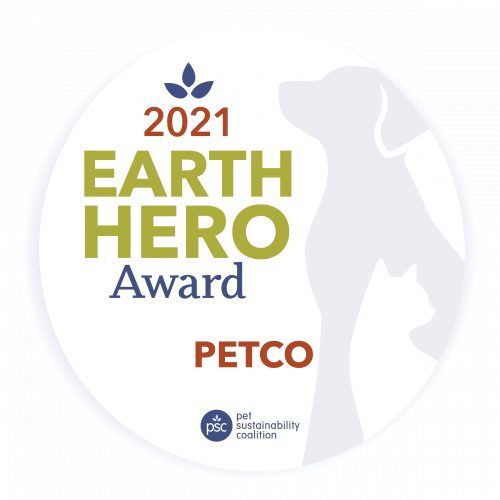 Trends
Trends
2+ MIN
30/11/2021
2021 Earth Hero Award Goes To Industry Game-Changer, Petco
We have many opportunities throughout the year to spotlight our — particularly through the PSC Accreditation Program — but the Earth Hero Award is unique in that it focuses on transformational work within the industry. It is designed to recognize members who not only live the high standards PSC encourages and measures, but also influences others in positive ways. Petco has been a sustainability champion for PSC since their founding partnership in 2008. Always active, their work continued to ramp up as their sustainability leader, Francesca Mahoney, was promoted to a newly established leadership role as Head of Sustainability in 2020. Mahoney built on impressive 2020 achievements (including the elimination of 3.6 million pounds of cardboard waste and 30,000 pounds of plastic waste, upcycling of 1.5 million plastic bottles into pet accessories and the elimination of 3.2 million pieces of packaging waste) to drive toward even more ambitious goals for 2021. In April 2021 Petco made the news again by setting a public goal to increase its assortment of sustainable products to 50% by the end of 2025. They established five key pillars to assessing these targets, including Responsible manufacturing Sustainably sourced materials Sustainably sourced ingredient Responsible packaging Animal welfare From this public announcement Petco has launched a tsunami of sustainability work in our industry and PSC has been there on every step of the journey, both as an expert voice and with functional and educational support to Petco, their vendors, associates and broader community. Petco has inspired the entire industry, not only by setting ambitious goals, but also by backing them up with the resources, support and leadership to make the goals attainable. Together, Petco and PSC are driving positive impact within the pet industry by educating, engaging, and collaborating with pet suppliers to incorporate sustainability practices across the industry. Congratulations to our 2021 Earth Hero, Petco! Source: Pet Sustaintability Coalition
 Micro Ingredients
Micro Ingredients
4+ MIN
29/11/2021
Por Erika Stasieniuk
ZEOLITE: a multifunctional additive for PET FOOD
For this reason, the use of additives capable of improving fecal score and odor has increased in pet food formulations, which have optimal nutrition as the main characteristic. Among the additives with proven safety and benefits, clinopitilolite zeolite stands out, an aluminosilicate mineral, capable of guaranteeing the reduction of fecal odor, improving fecal score, increasing the digestibility of nutrients, reducing the presence of gases from the fermentation of food in the intestine, in addition to adsorbing mycotoxins. The molecular structure of zeolite gives it a much larger internal surface than the external one, formed by cavities and interconnected channels in which compensating ions are present, such as Na +, Ca2 +, Mg2 +, K +, and because they are weakly bound to the structure, it can be replaced by others present in the solution. Thus, zeolites can absorb certain ions from aqueous solutions, releasing those present in their structure, a phenomenon called cation exchange capacity (CTC), which in clinoptilolite-type zeolites is highly efficient. In addition, it has the property of absorbing excess water by slowing down the gastrointestinal tract, thus increasing the dry matter of the feces and improving the fecal score of the animals. Zeolite is considered a technological additive because it has the properties of reducing the concentration of ammonium (NH4 +), capturing carbon dioxide (CO2), hydrogen sulfide (H2S) and excess water (H2O) that is produced during the digestive process. or in the environment in which she finds herself. It also has an action as a binder that can improve the characteristics of the finished product in the extrusion process in the pet food industries. In addition to the applications mentioned above, we believe that zeolite can have many other practical applications in dog and cat food, extruded or wet. The recommendation for the inclusion of zeolite in food for dogs and cats is 5 to 20 kg (0.5 to 2%) per ton of food, values suggested by scientific studies carried out with dogs and cats in Brazil (FÉLIX et al., 2009; MAIA et al., 2010; ROQUE, 2009; SANTOS et al., 2011). These same studies show that the inclusion of this additive at the indicated levels does not interfere with the palatability of the food, and it can be safely included in extruded, wet food and in natural food for dogs and cats without altering the voluntary consumption of animals. . Thinking about the potential of this additive to improve other characteristics of formulas that seek optimal nutrition, we list below other reasons to include zeolite in pet food. ● Use in diets with ingredients rich in non-starch polysaccharides (NAP) Ingredients such as soy bran, widely used in the manufacture of pet food, contain 20% ANP. Soluble ANP can reduce the digestibility of nutrients and energy in the diet, due to the increase in the viscosity of the gastrointestinal tract (GIT) and the reduction of the passage of food, making it difficult for digestive enzymes to access the food bolus and interfering with the diffusion and transport of nutrients. To minimize the adverse effects of ANP on the fecal characteristics of dogs and cats, adsorbent additives can be used, such as zeolites, which, when passing inert through the GIT, adsorb water and gases and reduce the elimination of ammonia, which improves the characteristics and odors in animal feces. ● Use in high consumption diets. Even in oversupply situations, up to 50% more food consumption, the inclusion of 1.5% zeolite provided an increase in fecal score and dry matter, with better fecal consistency in fed dogs (Lowndes, 2014) . For certain food categories, such as lactating females or athlete dogs, where food consumption needs to be higher to meet a higher energy requirement, the inclusion of zeolite can be a great strategy to avoid bulkier and excessively wet stools. nitrogenous compounds and gases that influence the odor of feces. ● Inclusion in commercial or natural wet foods. As high humidity is an inherent characteristic of wet food, adding zeolite to these products can influence less moist feces, since it has the ability to absorb water, increasing the dry matter of the feces, bringing the fecal score of the animals closer. that consume wet diets to that of those who eat dry diets. When thinking about the interrelation of zeolite with the digestive process of minerals, there was concern that the additive would sequester the essential mineral ions present in wet diets, since it is an aqueous solution. However, an investigation carried out with cats fed wet diets containing zeolite showed that at inclusion levels of 0.5%, 0.75% and 1% they do not have negative interference from the point of view of mineral nutrition of calcium, phosphorus, magnesium, sodium, potassium, iron and manganese. (Santos et al., 2011). Potential for application in innovative products Zeolite's mechanism of action is likely to be multifunctional. Different action properties were evidenced in the gastrointestinal tract of the animals, among them: ammonia binding effect, fecal elimination of p-cresol, digestive transit delay effect, increased activity of pancreatic enzymes and toxin sequestering effect. Therefore, there is a strong indication that zeolite has the ability to modulate the intestinal microbiota of dogs and cats and new studies are being developed. We believe that zeolite has high potential in the development of innovative products for the health of the gastrointestinal tract of dogs and cats. In addition, it has gained popularity in human health as a functional ingredient capable of promoting a detoxifying effect in the body. Fact that makes some guardians already looking for food, supplements or supplements for their dogs and cats that contain zeolite in the composition. Source: All Pet Food
 Market Information
Market Information
3+ MIN
26/11/2021
United Arab Emirates consumers swing towards dogs, holistic pet food, and online shopping
Evolution Historically, UAE has been considered a nation of cat lovers. Basically, having any pet is traditionally perceived as evidence of the high social status of its owner in the country, but dogs are seen as unclean animals by most Muslims. However, the number of dogs has been seen expanding in UAE in the past few decades, to some extent owing to a rising number of expatriates living in the country. For instance, the total expat population in UAE has now come to 8.84 million, which constitutes approximately 89% of the country's population – a figure pet food companies must reckon with. Market size The Dubai Chamber of Commerce and Industry estimated that retail sales of pet food in the UAE nearly doubled between 2013 and 2018, reaching 255.9 million dirhams ($69.7 million). Sales of cat food jumped from 75.3 million dirhams ($20.5 million) to about 138.7 million dirhams ($37.8 million), remaining the largest segment of the market. However, sales of dog food are gradually catching up, increasing from 55.9 million dirhams ($15.2 million) to about 106.3 million dirhams ($28.9 million), the Chamber of Commerce and Industry reported. Research conducted by the consulting agency IMARC Group showed that the pandemic had not impaired the growth of the UAE pet food market. For instance, dog food sales climbed further to $33.3 million in 2020. IMARC Group also expects the UAE pet food market to reach a value of US$121 million by 2026. The landscape The UAE pet food market is currently dominated by importers. The largest supplying countries are Thailand, France, Australia, and New Zealand, according to the Chamber of Commerce and Industry. The largest local distributors are Arab Land Trading LLC and Saint Vincent Group. In line with the global trends, the market experiences a strong humanization trend, pushing customers to increasingly opt for more expensive pet food, and holistics. "Customers switching to premium pet food are a growing and important trend in the UAE. They turn to expensive pet food, and those natural, organic, or gluten-free," the analysts of the Chamber of Commerce and Industry said. "The market is getting more sophisticated," commented a source in a local pet food importer. "There is a popular saying that people start treating their pets like family members, and it is true. There is a sustainable and strong demand for good pet food as customers care about weight, allergies, and dietary tolerances of their pets, and so the market welcomes new products offering health benefits to pets". Online vs. offline The Covid-19 pandemic has also pushed pet food sales in the country into the online segment. The UAE retail e-commerce market reached a record $3.9 billion in 2020, a 53% year-over-year increase driven by the Covid-19-led digital shift, according to the official statistical data. The basic forecast envisages the value of the market to reach $8 billion by 2025. Currently, it is believed that 16% of pet food in UAE is being sold online, twice of the pre-coronavirus times. The country has a 99% of Internet penetration – the highest in the region, which is likely to facilitate further growth in online sales. In the background, the analysts of the Chamber of Commerce and Industry anticipate the development of small businesses in the pet food market. "If the development of the online pet food sales channels continues, a time will come in the when most people can buy pet food online instead of groceries. This may open wide opportunities for small companies working in this field, since they would be able to deliver their products to their customers directly, including through their mobile applications," the analysts forecasted. Source: Global Pets
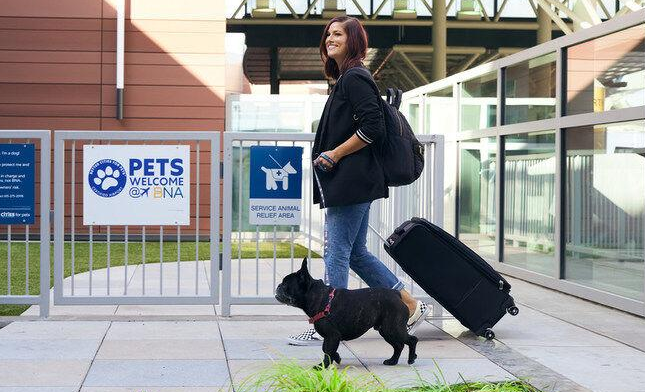 Trends
Trends
3+ MIN
25/11/2021
Mars Petcare launches Airport certification
The certification, in time for the holiday travel rush, comes in response to a rising demand for pet-friendly travel options, as a recent survey shows 85 percent of pet owners are likely to travel within the next year, and 65 percent saying they would like to bring their pets along, company officials reported. Following the company's recently launched partnership with Hilton's Homewood Suites by Hilton and Home2 Suites by Hilton brands, the new Airport Certification aims to accommodate the growing desire from pet owners to travel with their dogs and cats, and encourage other airports to make the travel experience more welcoming to both people and their pets. 'Our new Airport Certification is a natural extension of our Better Cities For Pets program into the travel space, an area where pet parents are looking for more welcoming and accommodating experiences for their pets,' said Ikdeep Singh, regional president at Mars Petcare North America. 'It's clear that pet parents want to travel with their cats and dogs and working with leaders like BNA help us ensure we're meeting their needs and delivering on our purpose: A Better World for Pets.' As the first airport to obtain the new pet-friendly designation, Nashville International Airport has prioritized the safety and ease of traveling with pets and service animals, installing a variety of pet-friendly amenities before and after the security checkpoint, officials said. New features include: A dedicated Dog Park, located in the Plaza on the fifth floor of Terminal Garage 1 to provide much-needed outdoor green space to traveling pets and pet parents complete with a hydration station and waste stations Two curbside relief areas at the North and South terminals, each equipped with a hydration station and waste station An indoor relief area located in Concourse D post-security, also equipped with a hydration station and waste station Enhanced visual wayfinding signage throughout the airport to make locating pet-friendly amenities easier for travelers Celebration of pet ownership throughout the airport, with two custom pet-themed murals in the North and South terminals where travelers can stop and snap a photo with their pets to document their trip. With these new spaces installed, pet owners will have options before and after the security checkpoint ensuring a more comfortable airport experience for travelers and their pets and service animals. To develop the new certification, Mars Petcare collaborated with the Civic Design Center, a leader in designing public spaces, and American Association of Airport Executives (AAAE), leveraging their insights and aviation expertise. The organizations provided feedback and guidance on the certification assessment, including input on relevant amenity enhancements and solutions that would facilitate welcoming, safe and comfortable travel environments for pets, pet parents and all other travelers. To apply for the new Airport Certification through the Better Cities For Pets program, airports must be located within 90 miles of a Better Cities For Pets certified city. To spread the word about the new Airport Certification, Mars Petcare teamed up with Nashville-native and acclaimed singer-songwriter Cassadee Pope, who recently checked out the pet-friendly updates at the airport with her French bulldog, Cuppy. Source: Pet Products News
 Market Information
Market Information
4+ MIN
24/11/2021
Por Luciana Chippano
The Pet Food market in Colombia
In this feature we´ll be analyzing the pet food market in Colombia. The change, a notorious fact A few years ago, going to a pet store meant a walk ... a bit boring: we only found food and the occasional accessory. Today, however, the offer of toys, snacks, products and varieties of food is much larger. In the Central American countries we have a common trend: the decision to delay or erase the idea of having human children, and the replacement with dogs, cats and any other pet. This is how, as the number of pets increases, the appearance of nurseries, stores, veterinarians, hairdressers and dog training, among others, also increases. Likewise, food with high nutritional standards and the use of products such as clothing or transport cars promote and expand due to the humanization process that is taking place with domestic animals. In addition, with the arrival of the pandemic, many people spent more time at home even than they had in years, and this had an impact on the need and desire to add members, mostly dogs and cats, to the houses. Regarding the pandemic, face-to-face services, such as bathing, spa and animal training, did suffer a drop during 2020, due to the impossibility of face-to-face activity. Colombian pet food, in numbers • According to the latest survey conducted by Fenalco, 43% of Colombian households have a pet, which is equivalent to approximately 4.4 million pets. Of this figure, 67% say they have dogs, 18% cats and 16% both. • In 2017 there were around 2,700 retail stores for pet food and accessories, and this number has been increasing since then. • Currently, Colombia is in the 4th position of countries that invest the most in their pets with an average growth of 13%. Brazil, Mexico and Chile are the countries that lead the top 3. • Approximately 56% of pet owners buy food in supermarkets or department stores; 17% in stores, 14% in warehouses specialized in domestic animals, 13% in barns; and 1% give you 'leftovers' of homemade human food. • Despite the pandemic, 2020 was a year of growth for the sector, since growth in the second semester showed an improvement and allowed the year to end with an increase of 17%, compared to the same period of 2019. • The segment in which they invest the most money for pets is that of food, whose variety ranges from traditional dry feed to natural foods, supplements, sweets, ice cream and treats. • Second, Colombians invest more in professional veterinary services and accessories such as toys and beds. Current trends for the Pet food market in Colombia Colombian export ventures The development of the pet food, snacks and accessories sector has been so great in recent years, that today we find many Colombians who are committed not only to undertake in the industry but also to conquer it beyond the borders of Colombia, internationally with different products and experience. Agility in feeding The food that is at hand and that is easy to provide to pets is the one that is increasing its demand the most due to the entry of women into the workplace and the little time that families have to give them homemade food. This change, consequently, has decreased the time spent preparing food and caring for all family members, both humans and pets. And although, for example, there are trends that are betting on the natural one such as the barf diet, the truth is that many families decide to stay in the safety and practicality of the food prepared and nutritionally balanced. E-commerce This point does not surprise us at all, given that Colombia, like all countries hit by COVID-19, has had to adapt and adapt its exchanges to the world of the Internet. Thus, companies in the pet food sector have had no choice but to reinvent themselves; Pleasantly, there has been a rapid adaptation to orders and procedures over the Internet. In many cases, businesses decided to bet and develop specialized channels that are in charge of online sales. A clear example of the increase in orders for pet food and accessories in a virtual way is that of Rappi. According to the company, although the category of pet products had been growing at double-digit rates, in 2020 the increase has been between 15% and 30%, depending on the time of year. Cleaning and pet care products are the line in which the most increase was perceived. The best brands in the Colombian pet food market Currently, the brands with the best reputation in the Colombian pet food market are: Orijen This brand is considered, worldwide, one of the best in terms of dog food. This is due to its high quality of ingredients, where 90% is from animal sources, while only the remaining 10% is based on fruits and vegetables. In Colombia it is only found for adult dogs and puppies. Taste of the Wild Taste of the wild is a brand with a holistic approach, which leaves out grains and cereals to offer a diet rich in good quality animal protein and fruits and vegetables. Its range of flavors is very wide: bison, venison, wild boar, salmon and duck, among others. Hill's Hill's is one of the most recognized brands worldwide. Its main lines: the traditional Hill's Science Diet, the veterinary Hill's Prescription Diets and the more natural Hill's Ideal Balance meet the demand and need of a large part of the market. All its products have animal protein as the main ingredient, but stand out for a great balance of vitamins and nutrients. Conclusion Keeping and caring for an animal in Colombia is increasingly important, and day by day the pet food and pet accessories sectors acquires more and more importance within the family economy. Do you think the sector is taking advantage of the great moment of growth? Source: All Pet Food
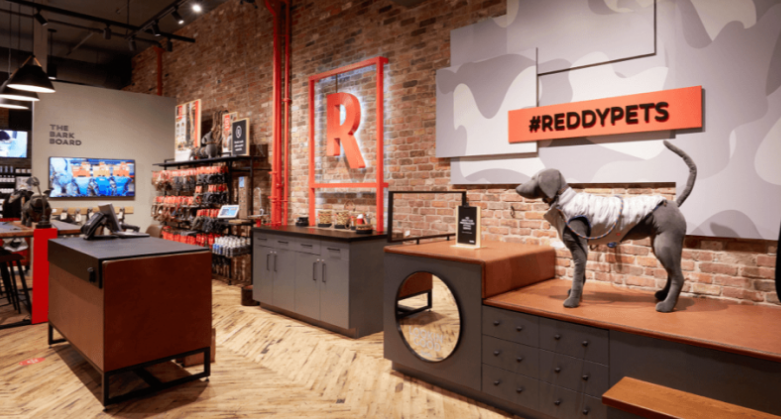 Market Information
Market Information
2+ MIN
23/11/2021
Petco opens flagship store for its premium dog accessories brand Reddy
After launching the brand in 2018, Reddy quickly became one of Petco's most popular brands. The brand offers apparel, collars, leashes, harnesses, beds, bowls, feeders and travel accessories. "Reddy's growth and popularity among active and trend-forward pet parents has been steady since launch," said Nick Konat, Petco's Chief Merchandising Officer. "And it's only accelerated over the last 18+ months as millions of pet parents are exploring outdoor activities and taking their pets with them wherever they go. This first-of-its-kind boutique will continue fueling that exploration by giving New York City pet parents a hub to bond, recharge and find the latest must-have gear to style their best lives together." The space is designed as an edgy, urban boutique inspired by industrial design and complemented by Reddy's bold color palette, patterns and textures. The store provides an interactive experience for dogs and their owners, including: A lounge area with wifi A fitting station, including custom services like personalized pet tags and on-site product monogramming, plus phone charging stations at the customization table Complimentary amenities for pets, like sanitary water stations, a "treatery" and whipped cream cups for pups A JustFoodForDogs fresh nutrition station offering a range of dog foods and treats Gram-ready walls, a "Bark Board" for community updates and a pet polaroid wall showcasing furry shop-goers in their element. In the coming months, the retailer is planning on drawing in more consumers to the store by releasing new products exclusive to the store. Source: Global Pets
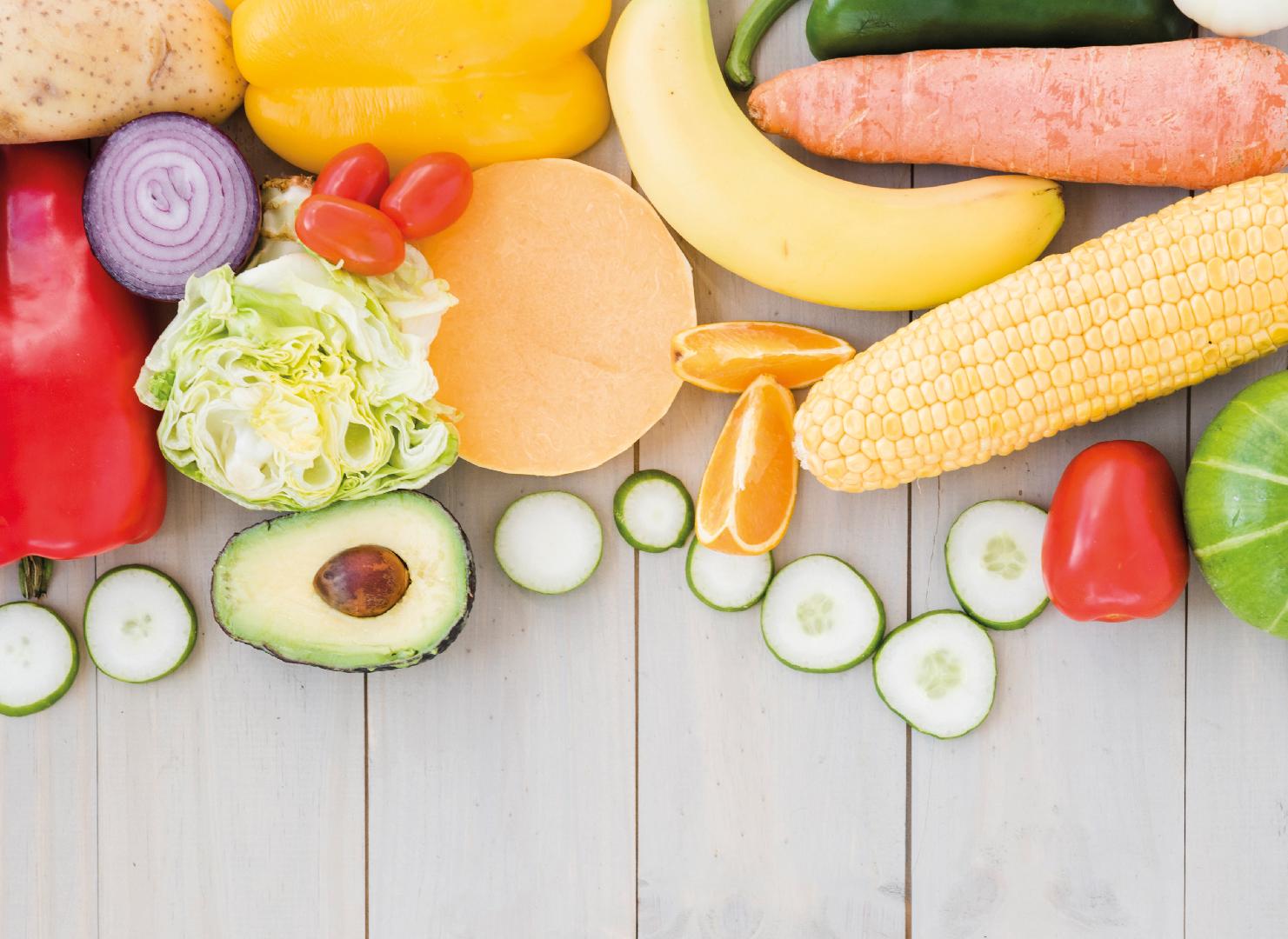 Micro Ingredients
Micro Ingredients
7+ MIN
22/11/2021
Por Armando Enriquez de la Fuente Blanquet
Antioxidants in the diet and in the well-being of the pet
The free radical is defined as a molecule that contains a free electron and it is that property that makes it dangerous, since it reacts with substrate molecules, such as cellular lipids, to make the missing electron stabilize itself. Free radicals are sometimes described as pro-oxidants, in the sense that they stimulate and cause oxidation. They occur as a result of normal metabolism, but can also appear through exposure to environmental stressors such as UV radiation, pollutants, tobacco smoke, and other chemical agents. Physiological processes in humans and animals require a constant supply of energy. This is provided in the form of energy-rich compounds (adenosine triphosphate) produced in the mitochondria of cells through the oxidation of nutrients such as glucose, fatty acids, amino acids. Oxygen is essential for life, and without it, any cell would die in minutes. A dog at rest weighing 12kg uses approximately 4 liters of oxygen per hour. Reactions that constantly consume oxygen produce small amounts of reactive oxygen molecules (ROMs), including free radicals. A certain amount of ROM production is normal in some types of cells, such as when macrophages take over microorganisms and there is an increase in the amounts of functional anion-superoxide (O2–) and hydrogen peroxide (H2O2) radicals as 'chemical weapons' that kill bacteria and prepare them for lysosome lysis by enzymes. Some nutrients, such as vitamin C and vitamin E, play an important role in regulating the content of these aggressive molecules in the cell. If the levels of these nutrients fall in the phagocytes, then their bactericidal action is diminished. There are low molecular weight compounds and endogenously produced enzymes known as antioxidants that help eliminate ROMs (see Table 1). The production of antioxidant enzymes also requires a sufficient and adequate intake of various trace minerals (Cu, Zn, Mn, Se, Fe). A catalase molecule contains 4 iron atoms. The superoxide dismutase contained in highly active phagocytes contains 2 Cu and 2 Zn atoms per molecule. Superoxide dismutase in the mitochondria contains 2 Mn atoms per molecule. Finally, there are several types of glutathione peroxidase that contain 4 Se atoms per molecule. Table 1 - General description of the action of antioxidants on ROMs Hence the importance of formulating food with good quality trace mineral sources that guarantee adequate levels in the body of our pets. Some antioxidants are obtained from the diet and the ingestion and absorption in sufficient quantities are important for health, since they prevent the accumulation in excess of high concentrations of ROMs in the cells and the consequent deterioration of their function; this is why it is important to achieve a balance between production and decomposition. The presence of free radicals in the body is a constant fact. Actually, free radicals are produced during metabolic reactions. Additionally, the immune system produces free radicals as part of its normal function of destroying invading bacteria. The generation of free radicals in the body can also be induced by external environmental factors. Free radicals are highly reactive and destroy other molecules, which in turn will form even more free radicals. The effect of this process is probably the cause of the pathogenesis of many conditions, including cancer, arthritis, cardiovascular disease, and other degenerative conditions; even the very aging process. The immune system seems to be especially susceptible to damage. Oxidative damage and free radical formation cannot be entirely prevented. Also, once the damage has been done, it cannot be completely reversed. However, antioxidants can slow down the process a bit. As we have been commenting on, free radicals occur regularly, so oxidative damage is a fact and what we must consider is the impact of this damage, so below I will mention some that I consider may be relevant in pets. Cell division is a constant process in the body. An accumulation of ROMs in the nucleus of the cell leads to increased alterations (= mutations) in the structure of certain genes, causing unbridled proliferation of cells; These genes are known as oncogenes. In dogs, tumors of the skin, soft tissues (muscles, connective tissue), and the mammary gland are common. Flavonoids, ascorbic acid, and vitamin E help reduce the occurrence of genetic mutations. The immune system is the line of defense against infections, parasitic diseases, and the development of tumors. Its function involves different types of leukocytes. The T-lymphocyte, which is produced in the thymus, recognizes pathogenic molecules; This results in an increase in the secretion of activators known as interleukins that stimulate the production of phagocytes in the bone marrow, and of lymphocytes in the lymph nodes and spleen. With age there is a decrease in the efficiency of the immune system and it is correlated to a deficient level of antioxidants. The aging processes in the brain are caused particularly by the loss of nerve cells. Pets express it with slower reactions, decreasing learning capacity and a decrease in memory function. An adequate intake of ascorbic acid, vitamin E, flavonoids and vitamins of the B-complex are necessary to maintain the good health of this organ. Oxidative damage and free radical formation cannot be entirely prevented. Also, once the damage has been done, it cannot be completely reversed. However, antioxidants can slow down the process a bit. As we have been commenting on, free radicals occur regularly, so oxidative damage is a fact and what we must consider is the impact of this damage, so below I will mention some that I consider may be relevant in pets. Cell division is a constant process in the body. An accumulation of ROMs in the nucleus of the cell leads to increased alterations (= mutations) in the structure of certain genes, causing unbridled proliferation of cells; These genes are known as oncogenes. In dogs, tumors of the skin, soft tissues (muscles, connective tissue), and the mammary gland are common. Flavonoids, ascorbic acid, and vitamin E help reduce the occurrence of genetic mutations. The immune system is the line of defense against infections, parasitic diseases, and the development of tumors. Its function involves different types of leukocytes. The T-lymphocyte, which is produced in the thymus, recognizes pathogenic molecules; This results in an increase in the secretion of activators known as interleukins that stimulate the production of phagocytes in the bone marrow, and of lymphocytes in the lymph nodes and spleen. With age there is a decrease in the efficiency of the immune system and it is correlated to a deficient level of antioxidants. The aging processes in the brain are caused particularly by the loss of nerve cells. Pets express it with slower reactions, decreasing learning capacity and a decrease in memory function. An adequate intake of ascorbic acid, vitamin E, flavonoids and vitamins of the B-complex are necessary to maintain the good health of this organ. Figure 1. Mechanism of the chain reaction of lipid radicals by action of vitamin E. The true support of antioxidants is to provide a balance that helps control the degree of oxidative damage, this is achieved by adding a variety of additional antioxidants to the diet, such as antioxidant vitamins, carotenoids or others. Next, we will talk about some nutrients that intervene with their antioxidant action in the body of pets. ● Vitamin E Vitamin E includes a group of chemical compounds called tocopherols and tocotrienols. Α-tocopherol is the form of vitamin E with the highest biopotency compared to the β and γ-tocopherol isomers. Vitamin E interrupts oxidation by donating electrons to free radicals that induce peroxidation of polyunsaturated fatty acids and also has important interrelationships with selenium and vitamin C. Peroxidation of body lipids can destroy the functional integrity of cell membranes , altering cell function. Vitamin E is not synthesized by the body, which is why it is considered an essential nutrient. The demand depends on the content of polyunsaturated fatty acids (PUFA) in the diet and the quality of the fats (content of peroxyl radicals). The plasma level under ideal physiological conditions should be 5 to 20 mg / l in dogs and 3 to 30 mg / l in cats. ● Vitamin C Vitamin C is a water-soluble vitamin, essential only for some animal species that cannot synthesize it, and which, if they do not ingest it in sufficient quantity, develop the so-called "scurvy" and hence its name as ascorbic acid. Vitamin C performs numerous functions, participating in REDOX (oxidation-reduction) processes, as an antioxidant agent by itself, and also protects the antioxidant capacity of vitamin E, reacting with tocopherol free radicals. The end net result is a reduction in the amount of available vitamin C and maintenance of antioxidant levels of vitamin E. ● Minerals Many trace minerals show at least one of their functions in the body in antioxidant enzymes. These include selenium (glutathione peroxidase); copper, zinc and manganese (superoxide dismutase); and iron (catalase). Adequate supplementation of these minerals is important for the enzymes to be synthesized by the body. ● Carotenoids Β-carotene, lutein and lycopene are pigments that belong to the group of carotenoids and are responsible for the yellow, orange, or red colors present in many foods. Of these compounds, β-carotene is the most studied and they are not endogenously synthesized by dogs or cats. It can be a source of vitamin A since β-carotene can be transformed into this vitamin when the body needs it. However, cats cannot form vitamin A from carotenes. Carotenoids show clear biological activity as antioxidants. Lycopene is a red pigment that occurs in tomatoes and is reported to inhibit the growth of certain types of tumors. Lutein is produced in large quantities in green vegetables and is necessary for the elimination of ROMs in chloroplasts. ● Flavonoids Flavonoids are yellowish-red pigments, found in vegetables and fruits (green tea and grapes); chemically they are polyphenols and help prevent arteriosclerosis and heart attacks in humans. Its main actions are to eliminate ROMs, increase the activity of glutathione peroxidases and inhibit the formation of lipid peroxyl radicals in lipoproteins. In summary, free radicals are produced as a result of normal metabolism, but are increased under stress, exercise, or during exposure to foreign agents. Excess free radicals damage cells and can be the cause of various pathogens such as cancer, arthritis, cardiovascular diseases, even aging. A balanced nutrition of good quality trace minerals is important for the proper functioning of endogenous antioxidant systems. The inclusion of antioxidant nutrients, such as certain vitamins, carotenoids or flavonoids, helps maintain an adequate level of free radicals in the body. Source: All Pet Food
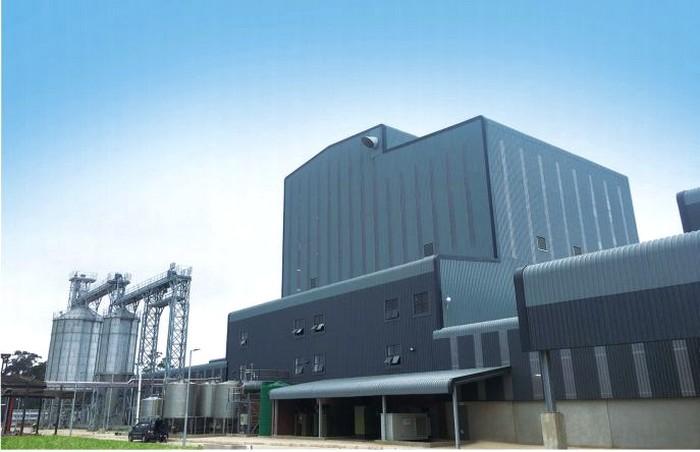 Extrusion
Extrusion
1+ MIN
19/11/2021
AVI-PRODUCTS- Second largest Pet Food manufacturer in South Africa
A production line with annual capacity 80,000MT was built up by FAMSUN in 2020, currently, AVI is the second largest pet food manufacturer in South Africa. Over the last decades through innovation and efficiency, pet food has proven to be an essential part of the solution to make the pet food production chain more sustainable. FAMSUN is always working with pet food industries players to meet the sustainability challenge – produce more, using less, at an affordable cost. by All Pet Food
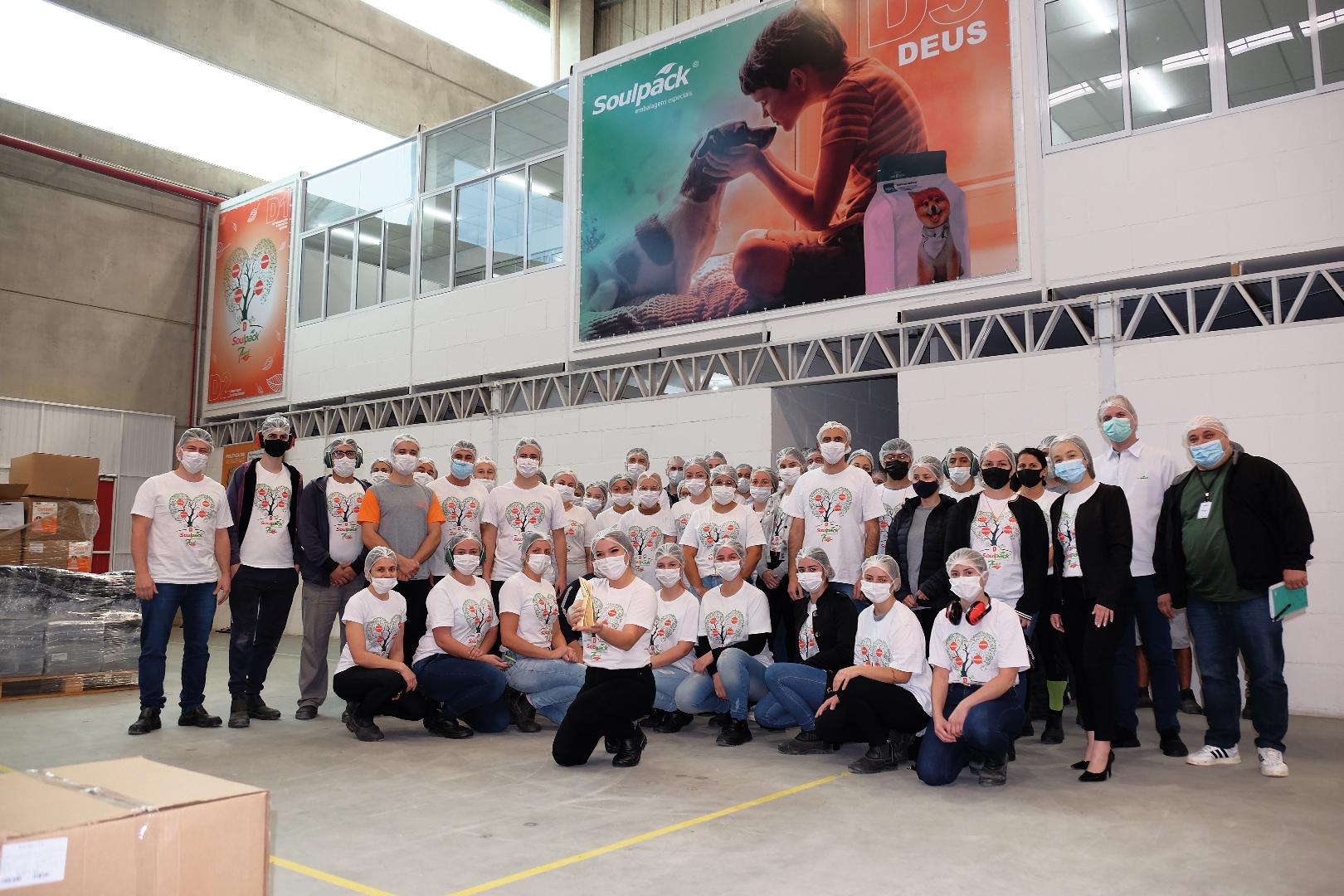 Packaging
Packaging
3+ MIN
19/11/2021
Soulpack is recognized with a gold trophy in a prestigious Brazilian packaging award
Soulpack Team: On the left Alexandre Silva, center Emerson Silva, on the right Caio Schlickmann. Since 2001, the ABRE Award (Brazilian Packaging Association) has established and recognizes the innovations of Brazilian packaging in a dynamic industry that works tirelessly and has as a strategy the improvement of its packaging either through materials science, manufacturing and printing technology, design for a better experience and functionality, and the pursuit of efficiency and sustainability. In this year of 2021, 362 packages were entered. Of these, 70 were awarded and Soulpack received the gold trophy in the market category. There are several criteria that each package presents to be a winner, always pointing to how it impacts innovation and the development of the sector. The package builds bridges, accesses, messages, value and impact. Innovation for the packaging industry is its way of positioning itself and transforming itself with society, in line with its development and the evolution of its purpose. Soulpack, leader in Box Pouch, develops packaging with technological differentials, among them, the laser cutting guide system, with internal zipper. The award-winning package combined the matte finish with a design associated with the color of the kraft paper and visual identity referring to the sustainability of food production, through certifications, to the manufacture of containers produced in green PE, sugar cane, thus satisfying the needs of its customers. Sustainability is already a cross-cutting issue in the sector, it is no longer a technical term, an area within the company, but it is a pillar of business development. It is also no longer about which is the best material, but which is the best solution for people, for companies and society, fulfilling functions that range from protection, security, to the expiration date, which plays an important role. in question sustainable. In terms of quality, safety, resistance and printing, the packaging to use is the Box Pouch. Soulpack's sustainable products are developed with high-quality raw material and have better resistance to ensure the useful life of the product. They have barriers that ensure smoothness, and crunchy texture, aroma and protect against mites, fungi and others. They take up less space in transport, logistics and storage. Functionality in addition to ergonomics and structure, practical opening and closing system, with an internal zipper that maintains the properties of the food after being opened and a sustainable appeal, the Box Pouch packaging draws the attention of tutors who also care about the environment environment. In addition, it incorporates the desire for a life with healthier habits, including pets. Therefore, the combination of an innovative and sustainable packaging, combined with a line of products with natural ingredients and exclusive certificates, guarantee a unique option in the gondola and in the pet food market as a whole. In addition, seeking excellence in packaging, combined with sustainability, our processes are designed not to harm the environment. We respect all stages of development, correctly using natural resources until the correct disposal of production inputs. Soulpack's environmental management makes it possible to produce different types of packaging with the conscious use of resources. Learn about some of these practices - Planting and cultivation of 350 native tree seedlings to add to nature, reducing the environmental impact in an entire area and in the surroundings of Soulpack; - System for collecting and using rainwater for various processes, with emphasis on the fire prevention system. In addition, the search to maintain high water efficiency for personal and productive use; - Own generation of sustainable solar energy through photovoltaic panels; - Reuse of chips for the manufacture of tiles, siding and ecological ridges, plastics, reducing the impact on the environment, by 100%, in the production of industrial waste. He thought of Box Pouch. He thought Soulpack! Source: All Pet Food
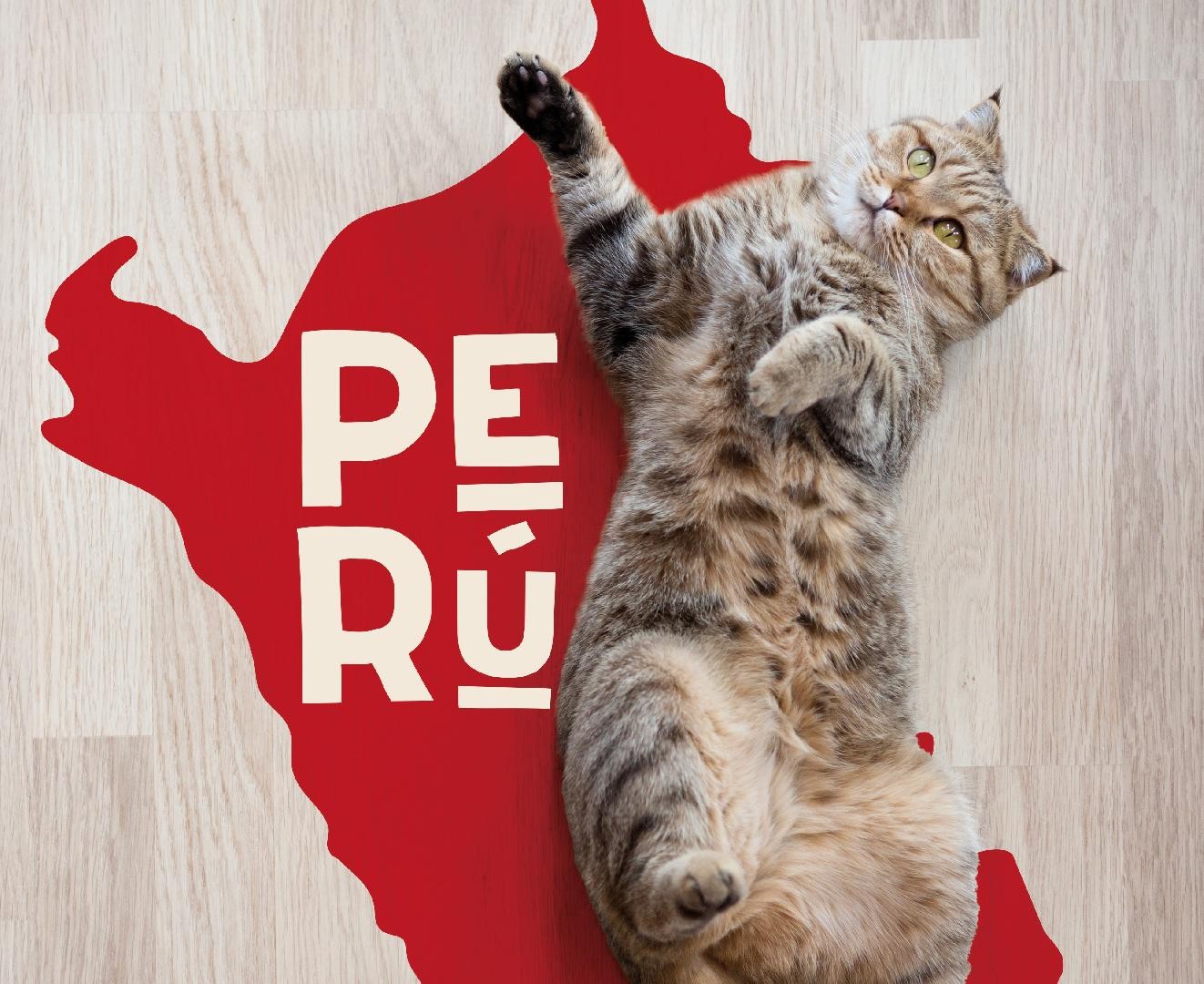 Market Information
Market Information
5+ MIN
17/11/2021
Por Luciana Chippano
The Peru of pets: The pet food market in 2021
Diverse data affirm that, in comparison with the numbers of previous years and statistics that are carried out since 1995, the percentage of Peruvians who choose dogs as their pets decreased; not so that of cats. Another important data is that this increase is perceived, mainly, in families with a socioeconomic level (SES) type D and E, the lowest. The rise of the pet market has made many Peruvians see their 4-legged companions as one more member of the family group, providing all the necessary care for their happiness. Currently, the pet food market in Peru is very diverse and the competition is considerable. According to t Millennium website, (although they are not official figures) it is estimated that currently almost 5 million households in Peru have at least one pet, which indicates that it is and can be a fairly profitable industry. Some relevant data 78% buy pet food and 56% decide to feed them homemade food. A large part of the population, as the numbers indicate, mix both types of food. The brands with the largest participation in the Peruvian market are Ricocan, Ricocat, Mimaskot, Dog Chow and Friskies. A study carried out in 2019 affirms that 49% of Peruvian households have at least one pet and that, in addition, they are in charge of choosing the most appropriate food and hygiene measures for them. Although dogs are still the favorites in numbers, more and more people are considering sharing their life with one or two! cats In fact, 59% of cats and 30% of dogs were adopted in the year of the study. These being the smallest breeds. The ideal audience? Couples without children, married couples with children 5 years of age or younger and adults over 55 are the groups most inclined towards adoption. A surprising piece of information is the decision to have more than one, even two! dogs under one household. In that same year, having three small dogs in a family increased by 191%! Similarly, the inclination to have more than one cat grew: 143% for those who adopt 3 felines, and 155% for those who stop at two. In the latest data collected prior to the start of the coronavirus pandemic, it was detected that families were spending, on average, between about 200 and 300 soles per month for the care and maintenance of their pets, which would be between about 50 and 75 dollars today. Main trends in the Peruvian market The awareness about what is given to the pets of Peruvian families (and the world) is constantly increasing. From care, affection, to food, everything is taking on a new degree of importance and relevance in pet owners. A clear example of this is the exponential growth of brands with organic and / or natural proposals, such as Maxcat and Naturalis. Some companies, such as Rintisa, the owner of the Ricocan and Ricocat brands, have been able to adapt to new market demands, so much so that they now foresee that innovation is and will continue to be a key factor in the development of pet food. "The results have been very good. We are closing the year with 35% growth. We have high quality products, supported by our expertise and a value chain focused on the pet food category'. Jesús Chuquilín, Rintisa's Commercial Manager. Pet shops and online stores This type of store has been growing significantly in recent years, but in a country where digitization in the industry came at its own pace, it should be noted that during the last year there have been substantial advances. 'Pet care is not a fad, nor is it a passing thing, it is a growing and very solid industry in many countries. Pets are a gold mine and even more so in the current quarantine conditions, where families live with them for many hours a day". Guillermo Vargas, Innova ESAN mentor. Pet shops and the entire industry related to pet care is booming. This is due, in large part, to the point mentioned above, the increased awareness of animal welfare, but also the improvement in personal income during the last 20 years, the independence of young people and the tendency to have fewer children have played a role. a very important role. 'If we consider that 60 %, about 4 million households, have at least one pet at home (according to CPI), and that these figures are almost three times the number of households with refrigerators in Peru, we can realize the potential of business that we have in front'. In addition, during the last year the strong growth and opportunity of opening online services such as, for example, the sale of pet food at home, was established. The CEO of Provet, an e-commerce specialized in drugs for pets, said that online pet shop businesses grew between 50% and 70%. For these businesses, their rapid management and development in the digital world has been a determining factor in generating trust and credibility in this new - but not so much - way of buying and selling products or services. The local and global economic consequences of COVID-19 are undeniable, and it is likely that more than one Peruvian household has been affected in the first person. However, it is also undeniable that there has been growth in the industry, and this is likely because the pandemic has forced people to spend more time at home and / or with their pets. Without a doubt, pets are becoming more and more a member of the family like any other who, in addition to feeding and loving, are given quality care. It will be, once again, in the hands of the industry to know how to take advantage of this new panorama to bet on development and innovation in the sector. Source: All Pet Food
 Palatants
Palatants
1+ MIN
16/11/2021
YummyRade Wins 2021 Pet Industry Federation Award for Product Innovation
YummyRade picked up the Product Innovation Award 2021 for Cat Products at the 2021 Pet Industry Federation Awards. This is the third prize that Tonisity has won for its new range of healthy, sustaining, nutritional treats and beverages for pets. KittyRade recently won The Cat Food Functional Diet Product of the Year Award at the Pet Innovation Awards and DoggyRadePro's won the Pet Care Products Award at the New Product Showcase at the PATS Telford tradeshow in Telford, England. YummyRade is a tasty meal enhancer for cats and dogs that improves the palatability of your pet's food. Dry foods and kibbles can sometimes be tasteless and unappealing, but YummyRade provides a rich and savory, low-calorie chicken flavored treat to add to your pet's food. The all natural, low caloric flavor encourages them to eat while also providing them with prebiotics to support good digestive health. YummyRade can enhance any food and is extremely low in calories and fat. It can be used to make your dog or cat's food tastier without worrying about any weight gain or creating digestive issues. Information about The 2021 Pet Industry Federation Awards and the award winners can be found here. YummyRade can be found for wholesale and retail purchase here. Retailers wishing to stock YummyRade, e-mail [email protected] by All Pet Food
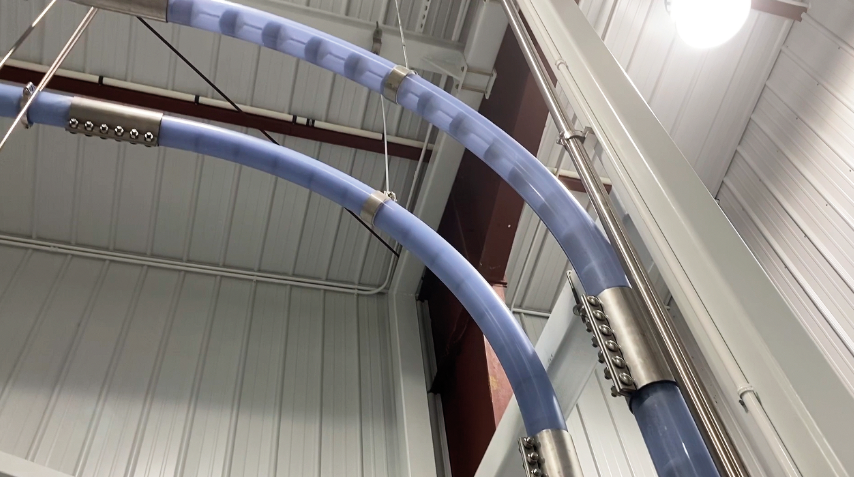 Conveying Systems
Conveying Systems
3+ MIN
15/11/2021
Pet Food processing requires thorough Conveyor "Wet Cleaning" to ensure food safety
To meet strict compliance standards, such as the Federal Food, Drug, and Cosmetic Act, pet food processors now utilize ATP testing to monitor equipment surfaces for microbial growth. Add to this the need to minimize cross contamination of products or ingredients with allergens after production changeovers, and more processors are realizing that the traditional means of cleaning conveying equipment may not be sufficient to meet today's rigorous compliance requirements. In the pet food processing industry, when conventional conveyors need to be disassembled, cleaned, and reassembled to reach all exposed internal surfaces, potential downtime can extend to days. If this proves too onerous, some processors dedicate separate conveyor lines to specific products, which increases capital equipment costs, labor, and the production space required. As an alternative to speed the process, pet food processors are turning to tubular drag conveyor systems, which gently move product through a sealed, enclosed tube using a drag cable and circular discs pulled through on a loop -- ideal for delicate items. Because tubular cable conveyors are enclosed, these systems can be quickly and effectively flooded with water, flushed, rinsed, cleansed, and thoroughly sanitized without disassembly – a process called 'wet cleaning.' For pet food processors, this 'wet clean' approach significantly improves food safety compliance and system reliability. The technique, in fact, thoroughly flushes out any potential trace allergens from conveying equipment that could be used for multiple products. Since a complete and thorough cleaning can be accomplished without disassembly of the system, the entire process only takes 20-90 minutes. This can substantially reduce downtime during production changeovers and eliminate the need for unnecessary additional dedicated conveyor lines. For pet food processors conveying a specific product, regular cleaning can be set to run on an automated basis. To resolve potential food safety and downtime issues, a growing number of pet food processors are replacing pneumatic conveyor systems with tubular cable conveyor systems with automated wet cleaning capability, such as those from Cablevey Conveyors. The Oskaloosa, Iowa-based conveyor manufacturer has designed, engineered, and serviced enclosed cable and disc tube conveyors for 50 years and is in more than 66 countries. The system can convey up to 2000 cubic feet per hour of materials with numerous layouts using multiple inlets and outlets. The cable conveyor's wet cleaning process internally cleans the tube in several steps starting with a water rinse followed by foaming agent, a sanitizing rinse, and a final water rinse. Once the system is thoroughly flushed out, drying is achieved by attaching urethane wipers to the tubular conveyor's discs, which 'act like a squeegee' to remove any residual water. To automate the cleaning process, Cablevey can help to integrate the conveyor with pet food processors' distributed control systems (DCS). By automating the cleaning, the system is essentially self-cleaning, so it is convenient to let it run through the cleaning process as employees take care of other tasks. Clear tubes can be chosen as an option for the conveyor system to provide greater visibility into the cleanliness of the equipment and the cleaning process as it occurs. For added food safety, processors can choose to add a unique inspection option that enables the running of a small, lighted camera system internally through the tubes, with video viewable on a smartphone via an app. Usually, this level of inspection is performed on an as-needed basis to further verify or document cleanliness. This clear tube system is transparent except where the clamps are, so pet food processors food packagers and processors can visually check at any time, and the internal camera system enables seeing 'every nook and cranny from the inside'. This, along with regular ATP testing, provides processors with the confidence that they are reliably meeting all necessary QA and food safety standards. Compared to air conveyor systems, the approach can also run significantly more product an hour with less downtime and less potential breakage. For the pet food processing industry, the wet cleaning capability is advantageous when dealing with a wide variety of products. As processors respond to the need for greater safety, flexibility, and efficiency, tubular conveyors with the ability to wet clean are an important tool to consider. Author: Del Williams, technical writer based in Torrance, California. Source: Cablevey
 Trends
Trends
1+ MIN
15/11/2021
Pet owner attitudes and expectations toward dog aging
They are more than ready to adopt solutions that allow their animal to stay healthy while growing old so they can share more time together. But what is dog owners' perception of aging? What do they do to fight aging? What do they expect from anti-aging solutions? Here are the results of an exclusive survey conducted with more than 1,600 dog owners from the UK, Spain, France, and the USA to better understand their attitudes and expectations about dog aging. Enjoy the survey HERE
 Animal Origin
Animal Origin
3+ MIN
12/11/2021
What are the health benefits of AstaOmega Oil for pets
The unique advantage of AstaOmega Oil is that all its nutrients come from a single source, the incredible krill, being free from preservatives or additives.Here are 3 things you should know about krill Astaxanthin – a powerful antioxidant A natural and powerful antioxidant, astaxanthin protects all body cells and boosts the immune system. Astaxanthin contains a unique molecular structure due to double bonds in the center and a hydroxyl and keto group on each end. These are responsible for their antioxidant properties. Antioxidants are essential for optimal health of pets, cognition, and longevity by preventing oxidative stress. The astaxanthin found in AstaOmega Oil is natural and both sustainable and traceable. Marine omega-3s - essential fatty acids Omega-3s are important nutrients for keeping pets healthy and can help them maintain a shiny coat. There are many pet foods with plant-based omega-3s, however, pets are not able to convert plant-based omega-3s to EPA and DHA well, and therefore most veterinarians recommend a marine sourced omega-3 supplement. What is the difference between plant-based omega-3 and marine omega-3 These are some of the most important health benefits of having a diet that included marine omega-3s: Heart - EPA and DHA are known to reduce both cardiovascular risk and high blood pressure. Brain - DHA is important for cognitive and behavioral function, and can also diminish the amount of neuronal loss when aging. Liver - Omega-3s improve liver health and function and are well-known for their anti-inflammatory effects. Immune Function - Omega-3s strengthen the immune system by making immune cells more flexible and resistant; they also help the immune system 'switch off' the inflammatory response and inhibit the production of pro-inflammatory components. Proven health benefits The first study on active Alaskan Huskies has shown amazing results. 20 Alaskan Huskies were random divided into two test groups. One group received a supplement with plant-based omega-3s (from flaxseed oil), while the other group received a supplement of marine omega-3s (EPA/DHA, from QRILL Pet AstaOmega Oil). A veterinarian examined the dogs at the start of the study and at 3 and 6 weeks. The objective of this study was to compare the effects of the flaxseed oil to the QRILL Pet AstaOmega Oil on the dogs. We wanted to determine which supplement had the most impact on the Omega-3 Index, which indicates the amount of health-promoting fatty acids present in red blood cell membranes in dogs. What is the Omega-3 Index After 6-weeks, we found out the dogs that received a marine omega-3s supplement of AstaOmega Oil increased their Omega-3 Index by 62%, while the flaxseed oil group decreased by 40%. We concluded that marine omega-3s are a more efficient source of the omega-3 fatty acids EPA and DHA. A sustainable and traceable marine omega-3 source AstaOmega Oil is sourced from one of the most sustainable fisheries in the world and has guaranteed traceability from sea to product. Antarctic krill is a sustainable marine omega-3 source coming from the pristine waters of the Southern Ocean. A species of tiny but incredible crustaceans, krill has been recognized as a powerful and sustainable ingredient for pet food. by Ana Dumbravescu - Marketing Manager Qrill Pet
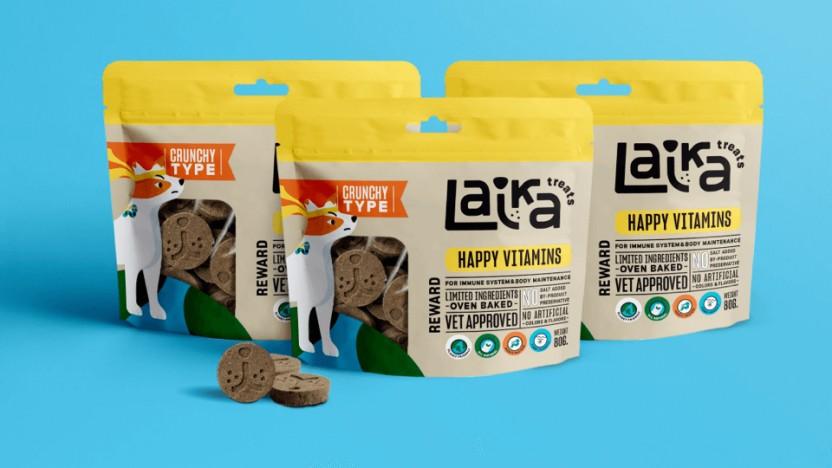 Home
Home
2+ MIN
11/11/2021
Thai insect-based pet treat startup Orgafeed attracts investment
The insects used are raised on a diet from pre-consumed food waste, supporting circular economy principles. Orgafeed has been a part of the first batch of SPACE-F, Thailand's first global food-tech startup incubator and accelerator, co-founded by Thai Union in 2019. This is not the first investment Thai Union makes in the pet industry. Thai Union's pet product portfolio includes market-ready brands such as Marvo, Bellota, Paramount, and Calico Bay and a vast number of private-labels under customer brand names. Thai Union recently expanded its pet food operations in Japan by forming a subsidiary to distribute, sell and import pet food and pet-related products. 'At Thai Union, innovation and sustainability are two important pillars of our business. The pet industry is experiencing strong humanization and premiumization trends, which has led to customers looking for healthier and more sustainable products, thus driving our portfolio towards sustainable pet products, such as insect protein, where the environmental impact (emissions, land and water usage) is significantly lower than other kinds of farmed protein,' said Roy Chan, CEO of i-Tail, Thai Union. 'Orgafeed will help us better serve our customers, especially in the sustainable pet food segment. We're very pleased to be participating in this round of funding and are looking forward to exploring collaboration opportunities with them.' Ittikorn Thepmani, Orgafeed's co-founder and Circular Economy Officer (CEO) said, 'We believe that insect protein is a sustainable choice that helps to raise the standard of the pet food industry, both in terms of nutritional benefits and sustainability. With this partnership and investment from Thai Union Group, we will be able to scale both our business as well as the positive impacts on the environment. We look forward to this journey together with Thai Union Group and their pet care experts and professionals.' by Global Pet
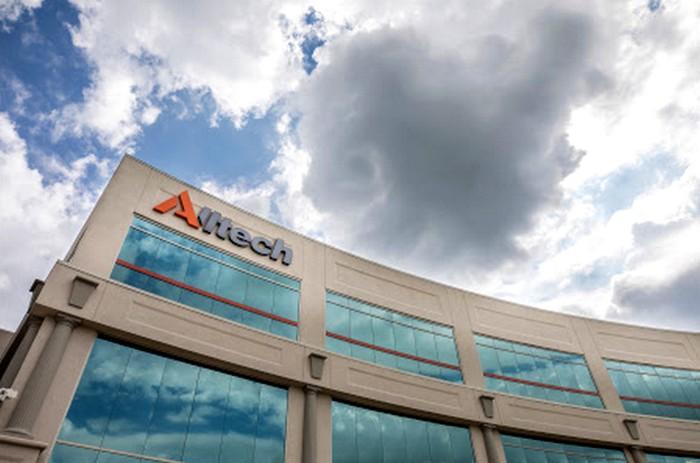 Formulation
Formulation
2+ MIN
10/11/2021
Alltech releases 2020 Sustainability Report
Despite the challenges, Alltech believes that agriculture has the greatest potential not only to meet the global demand but to positively impact the future of our planet. The company's bold vision of Working Together for a Planet of Plenty is reflected throughout the pages of the newly released 2020 Alltech Sustainability Report. 'This dawning of a new age in agri-food will require us to continue working together across geographies and industries to create a more sustainable future,' said Dr. Mark Lyons, president and CEO of Alltech. 'Agriculture has made extraordinary strides in sustainable production, but the next few decades will be crucial. Our sustainability report demonstrates our ongoing commitment to providing smarter, more sustainable solutions for producers while harnessing the power of collaboration and human ingenuity to create a more promising future.' While Alltech's Planet of Plenty vision looks toward the future, it's also rooted in long-held values. In 1989, Alltech founder Dr. Pearse Lyons committed to a guiding ACE principle, requiring that the company's endeavors prioritize the safety and well-being of the Animal, the Consumer and the Environment. Today, Alltech's vision for a Planet of Plenty propels its founding ACE principle into a new world of possibility. In 2019, Alltech became a signatory of the United Nations Global Compact (UNGC) and committed to nine of the 17 U.N. Sustainable Development Goals (SDGs), including zero hunger, good health and well-being, quality education, gender equality, decent work and economic growth, climate action, life below the water, life on land and partnerships for the goals. Throughout the 2020 Alltech Sustainability Report, each of the company's contributions is accompanied by the corresponding UNGC principles and SDG goals. 'We compiled our report with input from our teams across the globe,' said David Butler, head of sustainability at Alltech. 'I am excited by the level of energy and enthusiasm shown by our colleagues as they explore the positive impact of their work. Their determination reveals that sustainability is reflected not only in our core business but also within our culture. That purpose-driven engagement will help guide our success for years to come.' The report further details how Alltech's Planet of Plenty Partnerships are creating opportunities for advancing the implementation of science-led sustainable practices that improve profitability and animal and environmental welfare. 'This year has affirmed the vital importance of collaboration, trusting our scientific experts and welcoming diverse perspectives,' said Dr. Mark Lyons. 'Together, instead of leaving a footprint, we can leave a legacy.' Click Here to read the 2020 Alltech Sustainability Report. by ALL Pet Food
 Dogs
Dogs
1+ MIN
09/11/2021
European Pet Pharma Group celebrates U.S. Expansion
Headquartered in Olathe, Kan., VetNova Animal Health LLC will function as head office for parent group VetNova's North and South American operations. The company's offerings are now available in more than 20 countries across Europe, Asia, Africa, and America. VetNova's small animal catalogue comprises more than 60 products across several categories, including dermatology, renal/urinary, senior care, behavior, neurology, digestive, cardiology, and ophthalmology. 'VetNova believes the best product is the one that, in addition to contributing to the improvement of the animal's health, can be administered easily, without causing added stress and without affecting the human-animal bond,' VetNova stated in its expansion announcement. 'This forces the company to be in constant evolution, always listening to the client's needs to develop the most innovative products, and improve the product profile every year.' by All Pet Food
 Market Information
Market Information
3+ MIN
08/11/2021
Italy, a pet lovers’ country
In Italy, almost four out of ten households have at least one pet. The Italians' favourite ones are dogs (48.8%) and cats (29.6%). But you will find many homes with both! Because of the COVID pandemic, this number has – according to the 'Ufficio Studi Coop' Report – further increased to 3.5 million new pets being adopted this past year alone. With people spending more time at home and alone, pets are welcome companions to pass the time with. E-commerce still on the rise The pandemic has also influenced the purchasing habits of Italian pet parents: online channels note a double-digit growth since 2018. Sales reached a peak of +220% in March 2020, compared to the same month of the previous year. During the lockdown, many Italians discovered the ease of online purchasing. Born out of necessity – because non-essential shops were closed – online shopping has remained a much-favoured channel since. In a recent survey of Italian pet owners, 45% indicated having to buy products online for their pet during the COVID-19 lockdown. 79% stated to have purchased online at least once during the past year and 53% bought most of all their pet products online in the same period. Currently, 52% of Italians buy pet products online at least once a month. Amazon and Zooplus are Italian pet parents' favourite e-retailers: with Amazon being preferred by dog owners, and cat owners favouring Zooplus. Certain product categories are particularly popular online: pet food (good for 72% of sales), and toys (36%). Stone and mortar sales Despite the significant growth of online sales, high street retail still has an important place in the Italian pet market. In 2020, the Italian pet food market grew by 4.2% compared to 2019. The year showed a turnover of over €2 billion ($2.36 billion) in the main distribution channels: grocery, traditional pet shops and pet superstores. Sales volumes also increased by 2%. (Source: 2021 Assalco-Zoomark Report.) Cat food is the fastest-growing category in pet food, increasing by 5.9%. The segment which showed the biggest increase in 2020 is healthcare & hygiene: products like shampoos and other grooming items, training pads, pet wipes, brushes, et cetera. This segment grew by an astounding 14.7% in the grocery channel. Such figures do not include the €34.3 million ($40.55 million) in turnover generated by a typical Italian distribution channel: specialised pet stores owned by grocery chains. These include Amici di Casa Coop or Conad Pet Store (Coop and Conad being two of the leading grocery chains in Italy). These specialised stores are characterised by their broad product assortment, focus on the premium segment and in-store services. Such services typically include dog grooming, a vet corner, insurance, training services and more. This peculiar format is expected to develop further, with new openings in the short/medium-term and increasing orientation to customer experience, with the aim to attract new clients and build (their) loyalty. Private label sales are also expected to benefit from this emerging channel, both in terms of revenues and further premiumisation. Interest in sustainability In a recent survey (Permanent Pet Watch, Pet owners and Sustainability Survey, September 2020 and February 2021) Italian pet owners indicated that they were more conscious about sustainability issues. Especially the under 30s are concerned about the environmental impact of society as a whole. As for pet food, the survey showed that Italian pet owners have three main concerns: Respect for ethical principles by pet food manufacturers Sustainable packaging Sourcing of sustainable raw materials When purchasing pet food, Italian pet owners indicate that they are willing to purchase another brand than their usual one, if the other brand is perceived as more sustainable. They are also willing to pay more for a sustainable choice. The shift to buying sustainable pet products could be an interesting opportunity for pet food manufacturers. It could be worthwhile to develop a brand proposition and strategy that sets out and applies eco-sustainable company values. Such a strategy can help anticipate and meet new trends in pet parents' needs: boosting their trust and long-term brand loyalty and justifying their willingness to spend more. by Rita Buffagni - Communications Manager, Mediatic snc Source: Global Pets
 Cats
Cats
5+ MIN
05/11/2021
Managing Feline Stress
Dogs have a reputation for being the expressive and sensitive pets, while cats are seen as emotionally aloof. However, looks can be deceiving. In fact, felines can suffer greatly from stress and anxiety, just like their canine counterparts. '[Cats] are far more creatures of habit and even the slightest change in routine, diet, environment or schedule can cause anxious or fearful actions, aggressive behavior or improper elimination,' explains Michele Crowley, senior vice president of marketing for H&C Animal Health. Relieving cats' stress is about more than simply righting behavioral issues, though. If left unaddressed, it can place strain on or even break the relationship between the pet and the parent. 'The number one reason cats are returned to shelters is inappropriate peeing,' says Julianna Carella, founder and CEO of Treatibles. 'Often, this behavior is rooted in stress. Being back in a shelter can cause even more stress. It's a viscous and sad cycle. Helping cats reach a state of calm can literally be a life-or-death situation.' Luckily, pet specialty retailers can play a key role in stopping this unfortunate cycle by providing owners with the education, resources and calming aids they need to manage their cats' stress. Symptoms and Triggers The first step to addressing feline stress is determining when and why they feel this way. Since cats can't talk, though, pet parents must rely on other means of communication. Retailers can help bridge this communication gap by educating owners about the common symptoms of stress in cats, including self-isolation, pacing, excessive shedding, overgrooming, weight loss, lack of appetite, diarrhea/constipation, aggression, spraying, increased vocalization and urinating or defecating outside the litter box. Pet parents may also need assistance identifying the root cause of their stress. While every cat is different, triggers may include things like boredom, overstimulation, loud noises, new people or pets, moving houses, changes in routine or invasion of their personal space. 'Even simple grooming tasks like trimming claws can cause stress for both cat and owner,' says Ashley Stafford, brand manager for Paw CBD. 'And almost every cat owner dreads anything that requires getting a cat into a carrier, from veterinary visits to travel.' Aids to Address Stress In an ideal world, pet parents would be able to remove all the stressors from their kitty's life. However, since we don't live in an ideal world, manufacturers have created other solutions to help keep cats calm. 'After years of being misunderstood, cats are finally having a moment,' says Carella. 'Pet parents have more access to information from top cat behavior experts and feline-only veterinarians. They understand that managing a cat's stress is important for the whole family. And they are seeking products to help. 'It is a great opportunity for retailers to carry a variety of products and to equip themselves with knowledge about what each one offers.' This is especially true as the world begins to open back up, adds Crowley. 'More people will be hosting guests, traveling, and celebrating holidays, which can trigger a cat's anxiety response,' she explains. 'Having calming solutions on shelf will be important as pet specialty stores and their employees are a great 'go to' source for pet parents.' Since every cat is different, it's important for retailers to offer a robust and diverse selection of calming aid products. One tried-and-true option: products like sprays, chews and infusers that harness the power of pheromones and cats' natural instincts. 'Felines have a specialized organ on the roof of their mouth called the vomeronasal organ, also known as the Jacobson's organ,' says Crowley. 'This gives cats 10-times the smell receptors as humans, making pheromones critical in the way they communicate. For example, a mother cat uses facial pheromones to help her young ones feel safe. Tapping into this natural communication, pheromone-based products like bSerene, mimic these signals to help reduce stress related behaviors in a safe, drug-free way.' Another increasingly popular calming solution are products for cats featuring cannabidiol or CBD. According to a recent Brightfield Group report, there has been a 4 percent increase in CBD product use for cats between 2020 and 2021. 'People who have used CBD for themselves and been happy with the results are naturally turning to this hemp-based option for their pets,' says Stafford. 'With that, calming-specific products have seen a surge in the last few years. As with any trend, people see what works best for them and seek out similar options for their pets, wanting to share the same positive benefits.' It's important to note that research is still being conducted into the actual effects of CBD on pets. However, many owners find that CBD is an effective way to not only relieve cats' stress, but also benefit their overall wellness. 'There is nothing more holistic than CBD,' says Carella. 'It works with the neurological, physiological and immunological systems – the whole body. And with the correct administration of top-quality hemp-derived CBD, most cats experience relief.' Selling Serenity Although dogs often appear to dominate the pet industry, studies show that within pet-owning households, cats actually outnumber dogs. One way to take advantage of felines' growing popularity – and distinguish your store – is by creating a wellness area just for cat-specific products. 'Cats are not small dogs, and products should be species-specific,' says Stafford. 'Unless they have both dogs and cats in the house, pet owners want to know the products they are trusting their cats to are made just for felines and aren't interchangeable. 'Retailers need to carry more cat-specific options, ones made specifically for the unique needs and physiology of cats.' Of course, given the relative newness of the category, one of the most effective selling tools at retailers' disposal is education. 'Retailers should have at least basic knowledge about the highlighted ingredients in the calming products they carry (whether they be herbs, flowers, amino acids, vitamins or CBD),' advises Carella. 'It is beneficial to carry brands that offer educational materials and training sessions for staff.' Since many pet parents begin their search for a solution before they ever step foot in a store, retailers should meet them where they are – online. Consider adding educational materials and resources about calming on your website or social media platforms. For the in-store experience, category signage should also be heavily based in education to help customers find the best calming aid product for their situation. This could look like signs touting the benefits of calming aids or signs connecting behavioral issues, like aggression or bathroom issues, to stress. In-store events, like behavior education classes with local shelters or product demonstrations, are also a great way to engage and educate customers. 'For bSerene, we have also had a great deal of success with executing in store demos,' adds Crowley. 'One-on-one conversations have provided hands on education for shoppers regarding the benefits of using pheromone-based products. As a halo effect, these demos have also proved to be a great opportunity to educate store employees.' PB By Carley Lintz
 Cats
Cats
3+ MIN
04/11/2021
High-Protein diets help control Glucose in Cats
The feeding of companion animals plays a key role in their correct development, as well as in the general health of pets, which may have specific needs depending on their size, age or pathologies. To know the effects that different types of diet have on companion animals, there are different scientific studies. In this regard, new research has recently been published that has evaluated whether diets rich in protein and carbohydrates exert differential effects on serum concentrations of cholesterol, triglycerides and fructosamine in healthy cats. To carry out the study, a randomized crossover diet trial was performed in 35 healthy shelter cats. After the baseline health exams, the cats were randomly assigned into groups that received a high-protein or high-carbohydrate diet during 4 weeks. The cats were subsequently fed a wash diet for 4 weeks before switching to either of the two diets studied that they had not yet received. Fasting serum cholesterol, triglyceride, and fructosamine concentrations were determined at the end of each 4-week diet period. The researchers note that cats on a high-carbohydrate diet had significantly lower serum cholesterol concentrations compared to baseline measurements. They also note that cats on a high-protein diet had significantly higher serum cholesterol and triglyceride concentrations, but lower fructosamine concentrations compared to baseline measurements. In contrast, overweight cats (body condition score [BCS]> 5) had lower concentrations of cholesterol and triglycerides in the high protein diet than cats in other BCS groups. All this indicates, according to the researchers, that high-protein and low-carbohydrate diets appear to be beneficial for short-term glucose control in healthy cats. A high-protein diet was associated with significantly elevated cholesterol and triglyceride levels in healthy cats, although the increase was significantly less pronounced in overweight cats. "This finding suggests that overweight cats process rich in protein diets, cholesterol, and triglycerides differently from non-overweight cats," the researchers conclude in the study. THE IMPORTANCE OF PROTEINS IN CAT DIETS The results of the study are in line with the recommendations recently published by Virbac on some important factors to consider when choosing a food for pets. Thus, from the company, they emphasized the importance of choosing the diet based on the pathologies that the animals present, since, as this study has shown, for example, overweight cats may not process diets in the same way as cats that do not suffer from this pathology do it. In addition, the company has always stressed the importance of taking into account the nature of pets when feeding them. In this sense, Sébastien Huron, CEO of Virbac Group, recalled in a video the carnivorous nature of cats and the importance of providing them with a diet rich in animal protein. For this reason, from Virbac they insist that the premise of "high in protein of animal origin and low in carbohydrates" must always be taken into account, something very present in their Veterinary HPM range of food. And the fact is that the Veterinary HPM range, thanks to a low-carbohydrate and high-protein nutritional profile and the precise selection of functional ingredients, provides multiple benefits to companion animals, allowing them to enjoy greater protection of their condition. physiological and maintain good general health by Jorge Jiménez - Animal's Health
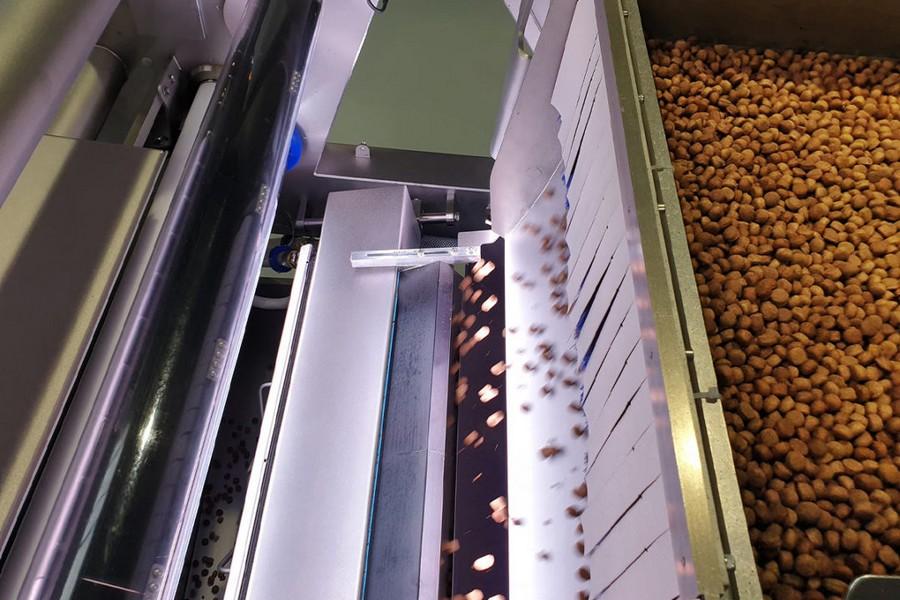 Dosing
Dosing
2+ MIN
03/11/2021
Key Technology designs sorting solution for Pet Food Processors
The sorter is designed to identify and remove foreign material and product defects to eliminate cross-contamination, improve product quality and safety, and minimize labor. The solution can be configured for various pet food formats and products, including kibble, chews and treats that are dried, dehydrated or freeze-dried. The VERYX sorter can be installed at the end of a production line to ensure final product quality, or upstream near raw receiving to inspect ingredients for a wide range of products, including wet pet food formulas. The VERYX sorter can detect color, size, shape and structural properties, with the capability of removing defective products or ingredients, plastics, glass, paper and other foreign materials. 'Our vibratory conveyors and mechanical grading systems have had a strong presence in this industry for a long time – almost every leading pet food brand around the world relies on our equipment, and we understand their unique needs,' said Marco Azzaretti, director of marketing at Key Technology. 'Now that these processors are seeing the value of digital sorting, we've leveraged our pet food application expertise to develop VERYX for these applications. Consumers are demanding higher and higher quality pet food, and VERYX can help manufacturers elevate their product quality to the level of human grade while improving the efficiency of their operation.' VERYX sorters are equipped with optimal cameras, laser scanners, lighting, ejection systems, product handling and software tailored to each customer's needs. The laser scanners and cameras provide images that are twice the resolution of previous sensor technology, which increases its ability to find small foreign material or defects. The solution also offers a 360-degree view of each piece of product. The sorter can also be fitted with proprietary Pixel Fusion™ technology by Key Technologies, which can combine data from multiple cameras and laser scanners to provide a clear identification of difficult materials or products. This tool also enables the company's FMAlert™ tool to notify operators of critical quality problems so corrective action can be taken quickly. It also helps with documentation of quality events. Key Technology includes its Discovery™ software suite with every VERYX sorter, which collects, keeps and analyzes data in real-time. This software can help manufacturers identify patterns and trends to improve operations from raw materials to sorting. VERYX can be integrated with Key Technology's vibratory and mechanical grading solutions applicable in pet food processing environments. The company's material handling solutions are designed for sanitation with fully-welded frames, nickel-plated finishes, oil-free drives, optional pan covers and other hygienic features. By Jordan Tyler – Pet Food Processing
 Market Information
Market Information
7+ MIN
02/11/2021
The Multifaceted Reasons Why Consumers Buy Made in the USA Pet Products
Year after year, the made in the USA category has enjoyed steady growth; however, manufacturers and retailers agree that the unique circumstances of 2020-2021 in particular have driven robust demand. Today's focus on USA-made products is multifaceted, noted Johnna Devereaux, CPN, director of health and wellness for Bow Wow Labs, a chew manufacturer in Novato, Calif. 'First, consumers have the perception, whether real or perceived, that items made in the USA are of higher quality and, if speaking of consumables, that the ingredients are safer,' she said. Second, during the pandemic, consumers have been more focused on supporting local business, and items that are made in the USA fit that bill, Devereaux added. 'The pandemic has shown us that globally sourced and produced products can be compromised in times of a worldwide pandemic,' she said. 'This last point rang especially true for retailers that were unable to stock shelves due to global shipping issues.' For these reasons, and beyond, consumers and retailers are more focused on made in the USA items, according to Chris Dennis, owner of GivePet, a treat manufacturer in Overland Park, Kan. 'Is it made in the USA? That is likely one of the top questions I hear from consumers and retailers,' he said. At Wag Heaven, which has two stores in Georgetown, Texas, the call for USA-made products has become more prevalent, according to co-owner Jeff Manley. 'Since contaminated food and treats from China made their way into the U.S. pet food market, customers have been more likely to seek out products that are sourced and made in the USA,' Manley said. 'We are witnessing many manufacturers moving their production to the USA, such as Champion [Petfoods] and Farmina.' Product shortages have increased the call for USA-made foods and goods, noted Pattie Zeller, owner of Animal Connection, a pet store in Charlottesville, Va. 'The more problems people are experiencing with distribution coming from overseas, the more they are begging for USA products,' she said. Zeller has found this issue to be particularly notable in the toy category. 'There have been a lot of out of stocks lately,' she noted. Bolstering the job market in the United States is another key consideration. 'Made in the USA is associated not only with high quality, but also with helping to keep jobs right here at home,' said Julianna Carella, founder and CEO of Treatibles, a Nashville, Tenn.-based manufacturer of organic full-spectrum hemp cannabidiol (CBD) oil products for pets. When it comes to foods and treats, sustainability is another trend on the rise, with shoppers not only wanting to know where ingredients are coming from, but also how those ingredients are grown and processed, according to Dennis. 'Consumers are looking for more plant-based ingredients,' he said. Due to current drought conditions in some areas of the country, however, products in the USA food and treat category can be difficult to obtain, with pricing going up, Zeller noted. 'These circumstances are making life difficult for producers as meat and grain products are extremely affected,' she added. The category was profoundly affected by the pandemic. With family members working and studying remotely, a new type of bonding occurred between pet and human, according to Devereaux. 'This strengthened the human-pet relationship, with pet parents becoming more aware of their pet's individual needs and a shift of focus towards preventative care,' Devereaux said. 'The result is that products promoting longer lives and increased health and wellness are in high demand.' The call for USA-made chews has also expanded, 'Long-term chews are a great way to provide mental stimulation and to keep a dog engaged for long periods of time, and this was especially useful as pet parents worked from home,' she said. 'Bow Wow Labs saw a huge uptick in our e-commerce traffic, with a sales increase in 2020 [of] more than 310 percent.' As consumers hunkered down, pet adoptions also ticked up in a big way—as did demand for training treats, according to Dennis. 'Consumers are looking for low-calorie training treats because they are treating throughout the day and training new family members,' he added. Sherry Redwine, co-owner of Odyssey Pets, a store in Dallas, noted that consumer frustration is another outcome of the pandemic. 'With importing being difficult, people are increasingly used to certain consumer products not being available,' she said. 'In my opinion, they are less likely to ask where a product is coming from and more likely to be grateful for getting it in their hands at all. 'This past year has been unlike any other. USA made is a great selling point, but it's not a deal breaker in my store.' The Importance of Giving Back Manufacturers and retailers agree that a key factor to business success is the ability to put investment back into local economies, lending a real-world value that ultimately benefits the community. 'I think any responsible business should take the opportunity to give back to their community,' Zeller said. 'It's only fair. The community is helping the business grow. I wouldn't be here without my customers.' Manley agreed. 'We truly believe that the success of our business lies in the support of our surrounding community,' Manley said. 'This is why we feel we exist, to serve.' At Wag Heaven, building a bridge between the community, manufacturers and distributors is accomplished through fundraising events—such as low-cost vaccination clinics, drive-thru pet food banks and dog washes—that benefit various community nonprofit organizations. 'We rely on everyone's support to make these events successful, and in most cases to fundraise for our local rescue agencies and shelters,' Manley added. Aside from these types of collaborations, some manufacturers take giving a step further by developing unique programs based around their own USA-made products and the needs of consumers and communities. Bow Wow Labs' Bully Buddy is an easy-to-use, veterinarian-approved device that tightly secures bully sticks, preventing dogs from choking on the tail end of the treat, developed in answer to the call for a way for consumers to safely give their dogs a natural, favorite long-term chew, Devereaux said. The company regularly contributes treats to shelter and rescue partners, and in late 2020 launched the Wag Another Tail program, where a portion of each month's proceeds are donated to leading nonprofit organizations dedicated to ensuring the health and welfare of dogs across the country. 'We are always expanding the network of rescue partners and shelters,' Devereaux said. 'It's our belief that dogs in shelters deserve to be kept as safe, healthy and happy as those that have already found their forever homes.' In 2016, Dennis founded GivePet out of a desire to help small, local or obscure shelters and rescues in need of assistance. 'I'd spent 16 years in the pet industry and wanted to do something to give back to rescues and shelters with every purchase,' Dennis said. 'Healthy treats are one of the most requested items at shelters,' he said. 'The more trained and socialized these dogs are, the more successful the adoption will be. It's a simple way to help make an impact in the lives of shelter dogs.' To keep it local, for every bag of GivePet's premium, grain-free treats sold in a retail establishment, a bag is shared with a shelter or rescue selected by that retailer. 'When a consumer purchases our treats, their purchase directly impacts rescues in their own community,' Dennis said. 'It's local and tangible.' In 2013, Treatibles entered the pet market, blazing a trail as a pioneer in creating CBD products for pets, according to Carella. But the path to the pet market commenced with a response to human needs. 'Our story began in 2008 when I established Auntie Dolores, one of the first five medical cannabis brands in California,' she said. 'I began creating a variety of edible products that offered much-needed relief to people suffering from a variety of maladies.' Eventually, clients began to ask if they could give Auntie Dolores products to their ailing pets. Understanding the risks involved with tetrahydrocannabinol (THC) for pets, Carella was inspired to develop a gluten-free pumpkin hard chew for dogs infused with CBD-rich oil, and Treatibles was born. Treatibles has a long history of supporting rescues and the animals they care for 'We believe that all dogs, cats and horses deserve love, compassion, care and a forever home,' she said. 'Unfortunately, some cats, dogs and horses are deemed unadoptable due to fear, anxiety or perceived aggression.' These misunderstood animals often thrive when their issues are addressed, and Treatibles offers deep discounts on all products to rescues and shelters. Further, the company collaborates with dozens of organizations nationwide through its Rescue Partner program by donating product or funds in times of crisis, Carella said. 'We partner with rescues and shelters across the United States to help bring calm, balance and ease to the animals in their care,' Carella said. by Lizett Bond - Pet Products News
 Market Information
Market Information
2+ MIN
01/11/2021
Pet Industry Outperforms Estimates in First Half of 2021
The industry saw overall sales growth of 6.7% over 2019, bringing total sales of products and services to $103.6 billion. APPA projected continued strong sales in 2021, estimating that growth would approach 6%, bringing total industry sales to $109.6 billion by year-end. APPA's midyear update to the U.S. Pet Industry Expenditure Report reveals that two categories have outperformed the estimates during the first half of 2021. Pet ownership showed continued growth during this period, and pet owners continuing to spend at unprecedented rates. Pet Food & Treats shows an estimated 13.5% increase over 2020 for the first half of 2021. This increase was driven by gains in all channels, with e-com, Farm & Fleet, and Direct to Consumer continuing to gain share. Supplies, Live Animals & OTC Medicine show an estimated 20% increase over 2020 actuals for the first half of 2021. This gain represents record performance as discretionary purchases accelerated due to various factors, including stimulus payments, new pets in the home, and new pet owners who show a propensity to spend more on their pets than others in their cohort. Inflationary pressure attributes to some of these gains as rising production and transportation costs are passed along to consumers. While not predictive of full-year results, these first-half numbers point to strong growth in all categories, including non-veterinary services (boarding, grooming, day care) that were severely impacted by lockdowns during the height of the pandemic last year. Challenges remain for manufacturers and importers dealing with the breakdown of the logistics infrastructure as they struggle to meet consumer demands. According to Chad Moutray, chief economist at the National Association of Manufacturers, 'There was significant upward pressure on wages [in September], with manufacturers continuing to cite difficulties in finding workers. The average hourly earnings of production and nonsupervisory workers in manufacturing rose 0.6% from $24.04 in August to $24.18 in September, with a 5.1% increase over the past year, up from $23.01 in September 2020. That matches the year-over-year gain in August, which was the fastest wage growth since September 1982.' It is safe to say, however, that the industry is likely to breach the $110 billion sales mark this year, only one year after exceeding the $100 billion threshold for the first time in 2020. The gains in pet ownership combined with increased spending from younger generational cohorts should continue to drive strong growth for the immediate future. by Steve King -CEO at American Pet Products Association (APPA)
 Market Information
Market Information
1+ MIN
29/10/2021
United Petfood announces the acquisition of Teeling Petfood
According to United Petfood's board of directors, 'Our mission is to be the best partner for our customers. Thanks to this acquisition, we can further expand our offer in wet pet food and meet the increasing demand. We find it important to continue to produce all our products in-house and only go for the very best quality." Teeling Petfood has been producing wet food for both dogs and cats since 1989. The Dutch company employs around 100 people and has high-quality production sites in Hoogeveen and Heerhugowaard. "Teeling Petfood guides customers from idea to delivery and guarantees the best quality. This method of working fits in perfectly with our philosophy. Also at United Petfood we strive for long-term partnerships based on trust and transparency." This takeover strengthens United Petfood's position within the pet food manufacturing market. With two additional production plants, United Petfood Group operates now out of 19 pet food facilities situated in 8 different European countries. The takeover is in line with the strategy of United Petfood to reinforce and grow the business. by United Pet Food Source: All Pet Food
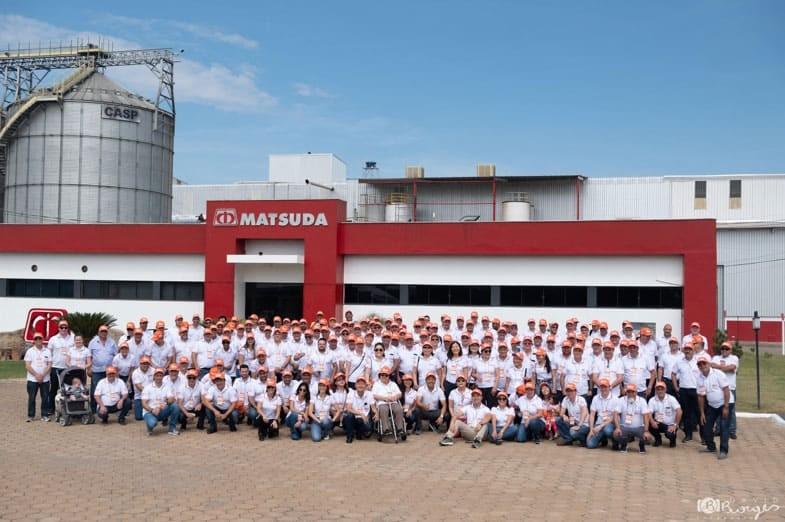 Conveying Systems
Conveying Systems
2+ MIN
28/10/2021
Matsuda & Cablevey Conveyors: Dedication and Reliability
With three production plants located in different Brazilian states, Matsuda Pet's dedication is its unifying quality common to each of its undertakings, from its several specialized pet food lines to the detailed entries in its weekly blog regarding animal health, pet nutrition and the pet food industry. Matsuda Pet moves forward with great regard for the legacy of the late Jorge Matsuda, a great businessman and philanthropist responsible for decades of steering the company in the direction of its prosperous growth. The Matsuda Group's decades of practical experience in the production of agricultural supplies were made evident by Matsuda Pet's rapid growth, whose high-quality products speak for themselves. Even though they are thoroughly dedicated to product quality, Matsuda Group still pays great attention to social aspects, sharing returns with the local community through actions such as donating to Casa Transitória Irmã Dulce, an institution in which recovering cancer patients receive care, and also through donations of tons of dog food to several non-profit animal shelters In the year 2020, Matsuda Pet inaugurated a new production line which doubled the company's pet food yield, a process in which Cablevey was a fortunate collaborator, furnishing the project with state-of-the-art conveying solutions. In 2021 Matsuda Pet has once again chosen Cablevey, this time incorporating cable and tube technology to overhaul and perfect the existing production lines. Cablevey offers a customizable, versatile, economical, clean, silent and compact alternative to machinery such as bucket elevators, screw conveyors, vibratory conveyors and many others. Without a shadow of a doubt, Matsuda Pet has chosen the best possible solution, a result of their great care in assembling the most advanced possible production process. When selecting the finest technology for your plant is a concern, one can't help but notice Cablevey is always present. Just as the Matsuda Group's 70 years of experience have been paramount to Matsuda Pet's development of extremely refined nutrition options for dogs and cats, Cablevey's 50 years of experience are the driving force behind our continuous improvement of the conveyor system which serves over 1,000 products in 66 countries. From Nestlé to Unilever to Mondelez to Cargill, Cablevey is a common factor among great names in the industry, and Matsuda Pet was able to pick up on this fact. With profound respect and commitment to its clients, Matsuda Pet has continually invested its effort in optimizing production, maximizing quality and prioritizing customer satisfaction. by Cablevey Conveyor
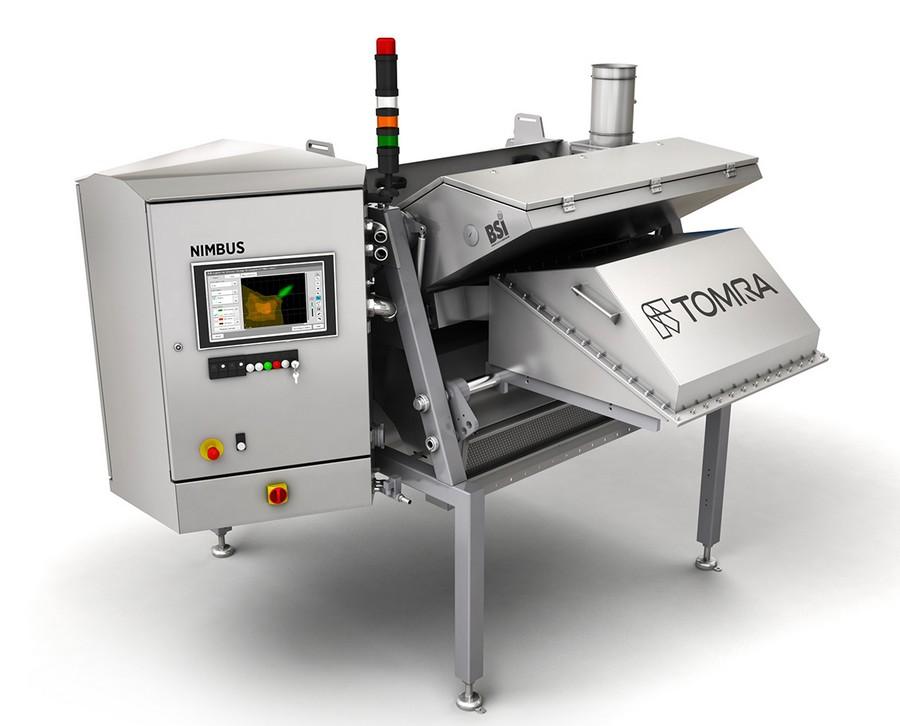 Grinding
Grinding
2+ MIN
27/10/2021
Why Only Remove Foreign Material from Dry Kibbles when you can also prevent Cross- Contamination
At best, the failure to separate different kinds of dry pet food products can cause buyers to doubt the manufacturer's quality controls and turn to a rival brand. At worst, a dog or cat with food allergies might be harmed by consuming a food-type not listed in the product's ingredients. The risk of cross-contamination is greatest when processing lines switch from one product batch or recipe to another. For this reason, some processors take the precaution of dumping the remnants of one kibble batch before switching to the next. Others simply hope for the best, thinking there's nothing much they can do about this. Neither approach is ideal, of course. For one thing, the habit of regularly discarding kibbles, sometimes in great quantities, is a costly waste of saleable stock. For another, the fast-spreading premiumization of the pet food market means that shoppers are becoming less willing to accept products which are visibly imperfect. And for another, something can now be done about this. In fact, everything can be done about this: in the last couple of years, TOMRA Food, the world-leading manufacturer of optical sorting machines, has introduced to the pet food industry a new and totally effective solution to the problem of cross-contamination. This solution is Biometric Signature Identification (BSI) technology, originally designed and developed to ensure the safety and quality of foods for human consumption. TOMRA's BSI+ scanner is uniquely capable of 'seeing' the biometric characteristics of all objects in the product stream, enabling the sorting machine to detect and eject unwanted materials even if they are identical to acceptable kibbles in size, shape, and color. This means it is now possible to prevent every single piece of unwanted kibble from getting to the end of the processing line. The BSI+ scanner's sorting platform is also capable of detecting and ejecting foreign materials from the product stream. This is essential, because the biscuits residue used as an ingredient in dry kibble can too easily be mixed-up with fragments of plastic or cardboard from wrappers and boxes. And it doesn't matter whether it's cross-contaminated product or foreign material - if a pet food buyer finds either in their bag of kibble, they're likely to switch to another brand. So now it's possible to guard against both threats, foreign material and cross-contamination - and without having to throw away saleable product Written by Lars Povlsen - Sales Manager Petfood Source: All Pet Food
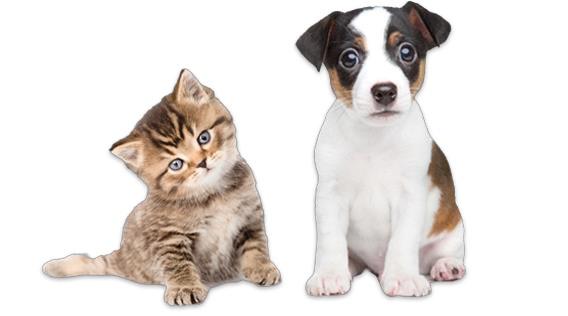 Coating
Coating
3+ MIN
26/10/2021
FAMSUN Pet Food Webinar Focuses on Processing Solutions to Grow Business in Headwinds
As pet parents spend more time at home, they care more about their pets' health and the food they eat. Instead of feeding them with byproducts and parts of animals that humans do not eat, pet owners increasingly prefer buying high-quality and differentiated food to improve pet nutrition, health, and wellbeing. Trending products are pet foods that contain a higher portion of quality meat, and innovative products that can solve allergies, picky eating habits, dietary issues. Consumer demand trends create new opportunities for industry players and new investors to innovate, diversify, improve or expand their productions for growth and development. Although the pet food industry is booming, there are serious issues that pet food producers have to face in the new normal of post-pandemic. The industry is at the risk of severe material and labor shortages as supply chain disruption worse. Production cost inflationary pressure surges with input prices rising amid the historically high energy and raw material costs. In this context and backed by its global R&D Institutes, Pet Food Business experts, and Sales & Service teams from different regions of the world, FAMSUN held a webinar on pet food solutions at UTC+8:00 of September 30, 2021, and provided the latest insights, new research progress, and improved production practices to support customers grow business in headwinds. Three keynote speakers go straight to the topics that pet food processors are interested in most. Reducing wastes are the most possible pointcuts to cut costs and improve profitability in a factory. Barry Howard, Vice President of FAMSUN USA Design & Engineering, has over 36 years of experience in pet food factory solutions, focused on Insights on Lean Manufacturing, Lean Factory Layout and Biosecurity. He identified eight deadly wastes generated from transport, inventory, motion, waiting, overproduction, overprocessing, defects, and skills in a factory, and the solution to eliminate these wastes with lean tools. In terms of food safety in pet food, site, process design, factory design & layout are parts of the key elements in manufacturing safe foods. Barry also introduced how FAMSUN's biosecurity factory solution controls the movements of people, equipment, materials, air, and moisture or condensation in the factory. With the latest zoning design concept, it is possible to prevent recontamination and ensure Food Safety in pet food. The topic Extruded Pet Food Processing Technology brought by Robert Strathman, President of FAMSUN USA Design & Engineering focused on knowledge and research progress on pet food processing technologies and the data of best production practices. Pet food product & process fundamentals such as bulk density, starch gelatinization, palatability, kibble durability, aesthetics, and shelf life were talked about most in his presentation. In dry pet food processing technology, he focused on pre-conditioning and extruder processes. High meat pet food is the trending product currently. Robert introduced the most efficient processing technology of high meat pet food, the challenges in processing, and the impact of meat inclusion on production performance The coating is an indispensable process in pet food production. It allows producers to diversify their products and provide a nutritional, functional, and differentiated experience for pets. Jimmy Wang, an expert of FAMSUN Asia R&D Institute, introduced FAMSUN CYPZ Vacuum Coating Equipment - the company's latest coater that specialized in adding value for pet food products. The machine is featured by consistent and efficient coating and high hygienic standards to produce high quality and food safety. Its successful application stories include the coating production in pet food factories of Japfa, Pure&Natural, FullPET, etc. Over 70 registers from Europe, Africa, the Middle East, and South Asia participated in the interaction sesión online. They discussed with FAMSUN experts the actual production issues and were well answered. If you have missed the webinar on September 30, you can contact the FAMSUN account manager in your region for the rebroadcast link of this webinar. You are also welcome to follow us in the coming FAMSUN Pet Food Solution webinar series, which FAMSUN plans to host for the convenience of customers in different regions with updated topics and information. Welcome to join us. Visit www.famsungroup.com for more information. by Famsun Group Source: All Pet Food
 Trends
Trends
1+ MIN
25/10/2021
Life cycle assessment: How to measure pet food environmental impact
From the identification of the impacts to the calculation of an environmental score, this complete analysis enables manufacturers to develop pet foods that meet pet parents' desire for sustainability. From life cycle assessment to environmental score, discover how to measure the sustainability of your pet food! Enjoy the full article HERE
 Dogs
Dogs
3+ MIN
25/10/2021
Pet humanization one of top consumer trends noted by ADM
Drawing on research from its Outside Voice consumer insights platform, the company's top trends for 2022 point the way for ADM's innovation, renovation and development platforms, the company said. Many of the trends are being shaped by the coronavirus pandemic that has lingered for the past 18 months. 'Consumers today continue to navigate a tumultuous environment that has uprooted every aspect of their lives,' said Brad Schwan, vice president of category marketing at ADM. 'This has led forward-thinking brands to develop new solutions purpose-built to help consumers establish a sense of normality for themselves, their families and their pets. We're seeing everything from foods, feeds and beverages that promote gut health to plant-based meat and dairy alternatives to biodegradable packaging.' Heading into the new year ADM said it expects consumers to be more proactive about supporting their mind and body through a balanced approach to diet and lifestyle. The coronavirus pandemic has placed renewed interest on mental well-being, and ADM said it expects more consumers to seek effective ways to cope with stress and anxiety. Thirty-seven percent of global consumers expect the snacks they eat to improve their mental well-being, according to ADM's Outside Voice research. Another continuing trend is the shift toward plant-based lifestyles. ADM's research shows a flexitarian approach to eating has become mainstream as consumers look to functional, wholesome, plant-based nutrition to support healthy, environmentally friendlier lifestyles. Alternative proteins are likely to account for 11% of the total protein market in 2035, ADM said, driven primarily by COVID-19, which has accelerated interest in plant-based as a health-forward alternative for consumers who are paying attention to their body's nutritional needs. Third, consumers are seeking foods, beverages and supplements that support gut health and overall well-being. As a result, ADM said awareness of the microbiome as central to wellness has grown over time. Data from ADM Outside Voice indicates that 58% of global consumers are aware of the potential benefits that bacteria in the digestive system can have on their overall health. Clean label has been trending for several years and ADM said it expects clean and transparent sourcing to remain a key trend heading into 2022. Most recently, consumers have used the COVID-19 pandemic as an opportunity to place an increased emphasis on learning where their food comes from and trying to ensure the health and safety of themselves, their families, their pets and their communities. ADM said 58% of global consumers say they will be more attentive to locality claims as a result of COVID-19. The humanization of pets has taken on greater significance and will continue to shape trends next year, ADM said. In fact, many consumers are transposing their purchasing values and preferences onto their pets. ADM Outside Voice found that 30% of global pet owners spent a significant amount of time researching the best food options in the last year. Precise and responsible animal feeding, and the interconnectedness of the animal product supply chain is another trend top of mind for today's consumers, according to ADM. ADM said companies are taking steps to provide digital documentation explaining how animals are raised, particularly related to its consumption of antibiotics and/or growth hormones. Nearly half (49%) of consumers are willing to pay a premium for products with high quality assurances and verifiable safety standards, ADM noted. A seventh emerging trend is sustainable goodness. With nearly half of global consumers now more attentive to sustainability claims there has been a surge in demand for ethical production and sustainable sourcing practices — such as regenerative agriculture and carbon negative production to protect the food supply of the future, ADM said. Brands are responding by taking positions on environmental matters, aiming to reflect their commitments to increasing the sustainability of their production and distribution systems. Finally, the importance of advanced renewables and biosolutions is coming to the forefront. ADM noted research showing 38% of global consumers are now willing to pay more for products made with sustainable materials. Additionally, conscientious consumers are paying close attention to seeking food, personal care and home care products that support the needs of their families, the environment and their local communities. by Eric Schroeder - Pet Food Processing
 Manufacturing Process
Manufacturing Process
3+ MIN
22/10/2021
Identifying critical system data with High-performance graphics
The control system's human machine interface (HMI) is the connection between an operator and each machine. HMIs provide processing data for operator and maintenance personnel to interact with the equipment. Traditional HMI graphics that are full of color, moving components, and detail are visually impressive but inefficient as the colors and animations detract from the actual data needed. Plant operators and maintenance personnel must quickly identify critical process information and high-performance graphics (HP graphics) allow them to do just that. By understanding HP graphics and how they help operators identify critical information, companies can confidently make the shift to new technology. High-Performance graphics vs traditional HMI graphics: Visual Differences HP graphics reduce troubleshooting time by highlighting pertinent information. While maintaining a visual representation of the equipment and system, HMIs provide a user with helpful alerts and status information. In traditional graphics, the proliferation of color is distracting. HP graphics reserve bold colors and movement only for instances when attention is needed. For example, if a receiver refill is disabled and the receiver is below low level, the low-level indication is visible, but the banner will be gray instead of yellow. This color change allows the operator to better focus on critical information. How to transition an HMI to HP Graphics It's possible that some personnel will not be initially accepting of the new graphics. The biggest push back when upgrading to HP graphics generally comes from operators that have been working with traditional HMIs for a long time and are used to a lot of color and detail on the screen. The grayscale color scheme brings a misconception that the new HP graphics will make it harder to understand what is happening in the system. However, with more muted tones, alerts and warnings are very easy to spot, providing the user a very readable HMI. HMI alerts and alarms that benefit from HP graphics include: System Status Device Faults Low Feed Rate Ingredient Setpoints Trends Process Variables Batch Details Implementing HP graphics on the plant floor NorthWind has moved to HP graphics as a standard for all projects. With this change, we have maintained the same overall feel, while providing a more readable HMI. Our HOA banners, menu bar, and feed point objects maintain similar aspects to our old graphics package but are now more visible when data is most critical. A lot of the changes incorporate the intentional use of color and adding dynamic visibility – displaying exactly what information the user needs to see at the critical moment. To further ease troubleshooting, reference points are built into the HMI, PLC, and electrical drawings, allowing personnel to quickly find the information they need. NorthWind trains and supports customers through the transition to HP graphics – from the startup process to complete integration. We also transition existing HMIs to HP graphics for a streamlined user experience across the entire manufacturing plant. At NorthWind, we're all about data. The efficiencies gained with the new graphics are everything we're about – accurate process data in the most usable form. Source: Northwind Technical Services LLC
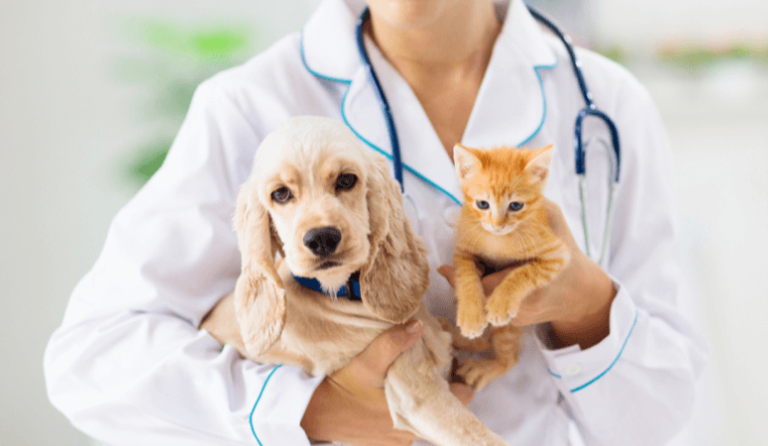 Market Information
Market Information
2+ MIN
21/10/2021
IVC Evidensia plans to merge with Canadian VetStrategy to become one of the largest veterinary groups
For comparison: Its biggest competitor, Mars, owns around 2,500 clinics in 20 countries. VetStrategy, including Groupe Vétérinaire Daubigny, operates more than 270 hospitals across nine Canadian provinces. Stephen Clarke, CEO of IVC Evidensia, said: 'IVC Evidensia will support VetStrategy as it continues to invest in patient care, client service and staff growth and wellbeing. Our businesses are a great fit, not just in terms of expanding our geographic footprint, but also in terms of our shared vision and values. Both companies are totally committed to caring for animals, people and the environment. VetStrategy shares our view on sustainability and the need to make a more positive impact on the world. Together we will continue leading the way in bringing new standards of animal clinical excellence and staff wellbeing to the markets we serve, including by investing in digitalisation to benefit consumers, their pets, and veterinarians alike.' Orin Litman, CEO of VetStrategy, said: 'VetStrategy is excited to partner with the IVC Evidensia team. Under the broader IVC Evidensia umbrella, we will be able to further invest in our network of clinics across Canada while enhancing the range of services we provide to our customers and our veterinarian partners. Having co-founded the business in 2006, I am immensely proud of our organisation's growth and commitment to our key stakeholders and I am thrilled to partner with one of the leading veterinary groups in the world to further benefit our veterinarian partners and hospital teams and continue to invest in our service and standards of care. I am particularly excited about our shared vision for the benefits that digitalisation can bring to the pet care ecosystem, and the expertise in that area that joining with IVC Evidensia can bring to VetStrategy/Groupe Vétérinaire Daubigny. I look forward to working closely with Steve and his team as we do great things together.' EQT will remain the largest shareholder in the enlarged IVC Evidensia Group, while Silver Lake and Nestlé will retain their significant minority stakes. All existing VetStrategy shareholders, including Berkshire Partners and the VetStrategy management team, are rolling their investment into the enlarged IVC Evidensia Group, reflecting their long-term commitment and shared vision to veterinary care across multiple countries and cultures. Source: Global Pets
 Market Information
Market Information
8+ MIN
20/10/2021
FAMSUN Named in 2021 China National Pilot and Demonstration Entities List
The list was public announced on the website of Ministry of Industry and Information Technology (MIIT) of the People's Republic of China on September 27, 2021.
FAMSUN was listed for its Fcloud - a professional industrial internet platform based on a secure and reliable Internet of Things cloud platform architecture. The platform provides agri-food manufacturing plants and companies with comprehensive data services from data-aware, data collection to cloud computing, data analysis, and digital applications for production and operation. It is an industrial platform that allows users to access or share data and information about the best practices, solutions, experiences, and insights on production, operation, governance, and green growth in the agri-food industry.
According to FAMSUN, the Fcloud is not only about intelligent factory production from raw material inbound to processing execution and finished product delivery. It also provides the supervision and management of vehicles, facilities, assets, environment, energy consumption, and security system of the whole plant, which allow producers better use and protect their properties, improve the well-being of employees, save energy and reduce waste.
The Ministry of Industry and Information Technology (MIIT) appraised the entities named in the 2021 List for their outstanding abilities and ambitious plans on the modernization and digital development of manufacture and supply chains in their respective fields. The pilot and demonstration period are two years. The qualified programs for sure will drive the high-quality development of industry and information technology and improve the efficiency of economic circulation in China.
'We will see the qualification as a recognition of our industry expertise, deep technology, and experience in delivering advanced industrial digital and intelligent manufacturing solutions to the agri-food industry," said FAMSUN. 'It will also motivate us to keep innovating and introducing the latest digital technologies such as artificial intelligence, IoT, blockchain, and 5G wireless communication into our processing and production solutions, and moving forwards under the commitments to advanced productivity, quality life, and a sustainable future.'
Agri-Food China
COFCO signs second sustainability-linked loan
September 24, 2021
COFCO International on Sept. 22 signed an agreement for a new $700 million sustainability-linked three-year term loan with seven banks.
China's high-quality grain projects boost domestic agriculture development
September 23, 2021
China's implementation of high-quality grain projects has promoted supply-side structural reform in agriculture, helped to increase food supply, and reaped benefits for farmers.
China to Strengthen Agricultural Sci-tech Innovation
September 20, 2021
The Chinese Academy of Agricultural Sciences (CAAS) has released a plan for promoting key subjects during the 14th Five-Year Plan period (2021-2025) to enhance the country's agricultural sci-tech innovation.
China donates $100,000 to Dominican Republic to fight African swine fever
September 20, 2021
To support the Dominican Republic's fight against African swine fever (ASF), the People's Republic of China government donated $100,000 (more than 5.7 million pesos) to collaborate with the fight against the disease that threatens the local swine population.
ADM Further Expands Global Nutrition Capabilities With Advanced Flavor Production
Facility in Pinghu, China
September 15, 2021 ADM (NYSE: ADM) today unveiled the ADM Food Technology (Pinghu) Co., Ltd., a state-of-the-art, fully automated flavor production facility situated in Pinghu, Zhejiang Province, China.
DSM sites in Jiangsu Province, China in first group to sign Renewable Energy Power
Purchase Agreements
September 8, 2021
Today, Royal DSM - a global, purpose-led, science-based company active in Nutrition, Health and Sustainable Living - announced that its four plants in Jiangsu have joined the first batch of companies in China's Jiangsu Province to sign Renewable Energy Power Purchase Agreements.
Japfa expands with partnerships in China
September 1, 2021
Japfa Ltd had entered into two separate agreements with Genki Forest and Honest Dairy, the company announced today via press release.
Market Insights
The Asia Food Challenge:
Understanding the New Asian Consumer
Asia is set to experience a seismic shift in food trends over the next decade, as consumers become more affluent, sophisticated and demanding, driving US$2.4 trillion of Asia's incremental food spend by 2030.
Asian consumers are set to double their spending on food by 2030, leaving a gaping hole for investors to bring healthier and more sustainable options to the table, according to a new joint report by PwC, Rabobank and Temasek.
Food spending in the region will hit more than $8 trillion by the start of the next decade — up from $4 trillion in 2019 — becoming the world's largest food and beverage market, the group's 'Asia Food Challenge Report 2021' said.
Much of that demand will come from changing consumer habits in an increasingly health-conscious, digital savvy region, but also from its rapidly growing population. By 2030, Asia is expected to be home to 4.5 billion people and 65% of the world's middle class.
The Asia Food Challenge
The inaugural report 'The Asia Food Challenge: Harvesting the Future' in 2019 highlighted the doubling of Asian consumers' food spend to over US$8 trillion by 2030, as well as the US$800 billion in upstream investment needed to meet it.
This year's report focuses on the importance of the Asian consumer, highlighting the exciting opportunities abound for agri-businesses seeking to satisfy a diverse and fast-evolving set of markets. Consumer choices will drive 55 percent of the US$4.4 trillion incremental food spend in the next decade.
To meet this fast-growing, consumer-driven spend, it is estimated that an additional US$750 billion in incremental investment will be required above existing levels by 2030, across the entire value chain. This
brings the total investment required to US$1.55 trillion by 2030. Addressing consumer needs will be a crucial factor in directing this massive investment, according to the joint research, which is based on a survey of 3,600 consumers across 10 Asian countries, Australia and New Zealand, as well as conversations with senior executives and experts.
A deeper, more granular grasp of consumers' behavior and food trends across Asia's heterogenous markets will be needed to allocate capital efficiently and capture higher returns. Value creation has never been more important than in today's increasingly competitive and ever-changing environment. Having a well-defined plan will enable business leaders and investors to maximize these opportunities and plan for a more resilient future. Those who focus on creating value for their business, their shareholders and customers will in turn create value for society and the entire food ecosystem.
Shaping of the new sophisticated Asian consumer
Consumers today are more discerning about the food they eat, influenced by changing demographics, rising affluence and growing incomes. For Asian consumers, the last decade was about trading up – spending growing disposable income on more expensive, tastier food. But in this decade, as the 2020 survey shows, priorities have changed. In particular, many consumers have become more value-seeking. Over half of the consumers no longer just list 'price' and 'taste' as their key purchasing criteria, but demand additional attributes as they become more sophisticated.
How do consumers make choices
While the supply and investment gap outlined above is a call for action and collaboration, it is important to recognize that this demand is consumer-driven. Consumers and their changing preferences are the real stars in this story. Based on extensive research, the report has distilled the critical shifts in six broad areas:
Asian consumers are shifting to healthier lifestyles and consumption habits. Many are replacing red meat and sugar with fruit, vegetables and healthy snacks, while selectively spending more on foods that offer traits they value, such as freshness and nutrition. They are still highly concerned about food safety, demanding more accountability about their food sources.
This emphasis on transparency also extends to the environmental impact of food production, as more Asians opt for more sustainable food consumption behaviors such as avoiding food wastage and buying local. The need for more sustainable food options has also bolstered interest in plant-based protein among Asian consumers, who are more open to vegetarian or flexitarian diets. Rounding off these six trends is online food purchasing, which Asian consumers have embraced, especially during the pandemic, as online food delivery and supply chain innovations offer greater convenience and speed.
These six trends are not isolated: they are often overlapping and significantly influence the other trends. But they are essential to how food and eating will change in Asia over the next decade. Covid-19 has accelerated these trends across Asia, further altering consumer lifestyles and preferences and forcing businesses to adapt.
The fundamentals: taste and price
There is no question that taste and price are the most fundamental drivers in Asian consumers' decision making. Without the right taste profile and the right price, brands and agri-food players have little chance to get onto the radar of consumers in this highly competitive region.
However, these two factors are increasingly just 'gate keepers'. While they are important to consumers, they no longer differentiate the winners from the rest of the pack. The discussions with many industry experts have led to conclude that successful players will need to combine taste and price with the six emerging trends to meet the higher expectations of the new consumer.
Catering to Asia's diversity
Asian shoppers' preferences within these six areas, such as their concepts of "health" and "quality", can diverge widely across markets. For instance, while health-related food brands have enjoyed a 12 percent valuation premium on average in the last five years, consumers surveyed show marked differences in their willingness to pay for health. Shoppers in markets like Singapore and Japan are considerably less committed to paying a premium than consumers in China, likely because they have the highest food quality and safety standards in Asia 2 and consumers have trust in their enforcement.
Differences in willingness to pay between territories could also be due to a plethora of factors, such as heightened food safety concerns or the lack of understanding about the composition or importance of a healthy diet.
Catering to this large, diverse and dynamic market requires an intimate understanding of common regional trends and local nuances.
Investable opportunities
With agri- and food-tech investments quadrupling between 2014 and 2019 in Southeast Asia, it is clear that investors and business owners will play a pivotal role in the future of the industry, developing new products and business models that are highly responsive to the unique, needs of sophisticated Asian consumers.
The market is ripe for opportunities in innovation and investment, and looks attractive to business leaders and investors alike. When considering the key trends, the research shows that companies with a broad emphasis on health, digital, and sustainable offerings have enjoyed valuation premiums over the last five years, compared with companies that did not.
Similarly, within the nascent, high-growth alternative protein industry, we see high enterprise value-to-revenue multiples compared to traditional packaged food and meat businesses. While alternative protein valuations have been observed to trade at higher multiples than traditional protein companies, it is important to note that given the low number of transactions and the lack of publicly available data to date, it is difficult to get an accurate picture of such multiples at present.
Business leaders and investors will need to prioritize value creation, leveraging insights from the six key trends to drive value for themselves, their customers and society. Meeting the US$ 750 billion consumer-driven investment requirement by 2030 will require creativity from business leaders and investors along the whole value chain.
Source: Famsun Group Co. Ltd.
 Trends
Trends
4+ MIN
19/10/2021
GEA raising the bar for sustainable heating and cooling solutions
By renaming and reshaping our Refrigeration Technologies division to GEA Heating & Refrigeration Technologies, we've empowered our teams of experts to contribute more than ever before. This is how we put 'engineering for a better world' into practice.
Raising the bar #1: better heat pumps
GEA Red Heat Pumps
Heat accounts for more than half of the global total final energy consumption. Despite best efforts, today it is still mainly produced using fossil fuels. If we are to limit global warming to 1.5 degrees Celsius compared to pre-industrial levels, we need a real game changer. When it comes to decarbonizing heat, heat pump technology with its proven track record is just that. Using heat pumps to cool our warming planet makes a lot of sense.
In that respect, we at GEA focus on extending the heat pump portfolio providing higher temperatures, which is exactly what's required for process heating in food and beverage production and district heating networks. Thanks to our strong in-house R&D, we constantly have technology leading products in the pipeline. We will soon be launching an extended product portfolio, with special emphasis on higher efficiency and reliability heat pumps based on a new line-up of high-pressure compressors. This will enable our customers to achieve higher supply temperatures for their processes than ever before.
Raising the bar #2: better use of data
Automation and digitalization are key elements in our climate strategy. Many of the new products that we will be launching as we go forward will benefit from data generated within our own organization and throughout the entire lifecycle of our equipment and solutions. By carefully analyzing these data, we gain insights that enable us to give our customers the best possible advice on how to further reduce energy consumption in and increase availability of their production plants. Better use of data ensures that our customers gain more speed on their road to decarbonization.
Raising the bar #3: better access to sustainable technology
As a technology leader, GEA is committed to driving change in the market. That's why we've recently launched a multi-million-euro investment in the extension of our test centers throughout Europe.
Thomas Strotkoetter, Head of the Compression Technologies Business Unit, says: 'Thanks to our extended testing facilities, our customers will have easier access to the latest heat pump technology and will be even more motivated to opt for the right sustainable solution for their applications.'
Raising the bar #4: better integration of heating and cooling
In applications such as food, beverage and dairy processing, products are usually heated up and then refrigerated. In seeking a sustainable approach, we felt that bringing cooling and heating together was the logical thing to do. A circular approach offers many advantages: it enables our customers to reduce and reuse as much energy as possible. Low-grade waste heat will be upcycled efficiently for all required processes.
Kai Becker, CEO of GEA Heating & Refrigeration Technologies, says: 'Our integrated cooling and heating solutions represent a real blueprint for converting heating operations from conventional to carbon-neutral in the food processing industry and in district heating networks, since the required heat is generated by largely reusing waste heat."
'At GEA, we strongly believe that collaboration and innovation are of the essence to remain at the forefront in tackling the climate challenges that lie ahead. That's why we bring our wealth of in-house expertise in cooling and heating closer together, and that's why we're now renaming our refrigeration technologies division to GEA Heating & Refrigeration Technologies.'
GEA Integrated Refrigeration and Heating Plant
Raising the bar #5: accelerated decarbonization transition
Time is running out for the world to change its ways if it is to achieve the goal of net-zero carbon emissions by 2040. By providing the most sustainable heating and cooling solutions and by minimizing our customers' carbon footprint as well as our own, GEA is tackling one aspect of climate change head-on.
Sustainable Engineering
Kai Becker adds: 'Being part of the GEA Group allows us to go even further. Combining our first-class products and solutions in cooling and heating in co-developments with GEA process experts, with customers and external partners leads to more sustainable and fully integrated applications. GEA has the knowledge, the technology and the ability to successfully implement innovative projects that enable customers to build green factories that comply with current and future emission targets.'
The SEnS initiative is an excellent example of our drive to ensure sustainable solutions for our customers worldwide. GEA's Sustainable Energy Solutions (SEnS) can revolutionize the integration of processes and utilities (cooling and heating) to force down energy consumption, reduce carbon footprint and slash total cost of ownership across multiple food industry sectors.
We're raising the bar for fully decarbonized food, beverage and dairy processing.
We're raising the bar for ourselves, our customers and our partners.
We're raising the bar to protect our planet for future generations.
Will you join us?
Source: Gea Group
 Trends
Trends
3+ MIN
18/10/2021
Royal Canin invests in ICON Level Membership with Pet Sustainability Coalition
The change represents Royal Canin's continued expansion of its commitment to sustainability leadership in the pet industry. Icon members are leaders whose investment in PSC helps to advance their company's environmental and social performance. Icon level members are also important partners in the Pet Sustainability Coalition's work on major systemic issues facing the pet industry. Royal Canin's increased engagement will provide PSC with important industry expertise and financial support to advance its industry-wide priorities, which include: finding sustainable solutions to complex packaging needs, advancing the sustainable sourcing of proteins, and the promotion of Diversity, Equity and Inclusion in the industry. 'As one of the largest pet food manufacturers in the industry, and a brand within the MARS Petcare family, Royal Canin's selection of an Icon membership is a major milestone that indicates the significance of sustainability as a key business topic for brands large and small. MARS has one of the most aggressive sustainability plans amongst its peer group and we are honored to support their efforts within Royal Canin to advance their progress within their petcare business', says Caitlyn Dudas, Executive Director, PSC. 'At Royal Canin, we strive to create a sustainable world for pets, people, and the planet,' says Cecile Coutens, Regional President of Royal Canin North America. 'With a mission of Creating a Better World for Pets, we have lived our sustainability commitment with our sites sending zero waste to landfill, achieving 100% sustainable fish sourcing and contributing to reforestation projects around the world to name a few. We have an important role to play and want to extend our sustainability leadership, while inviting others in the industry to join us in helping to create a more sustainable world in which our pets, people, and planet thrive.' Sustainability at Royal Canin Royal Canin's investment in PSC is one of many important steps toward the science-based pet health nutrition company's ambitious sustainability goals. In addition to the examples mentioned above, Royal Canin has assessed the carbon and water footprints of all their raw materials and established reduction goals. The company is optimizing product formulations and sourcing strategies that consider their environmental impact. Royal Canin maintains valuable partnerships with the World Wildlife Fund, is an Ellen McArthur New Plastic Economy signatory member, and a member of the US Plastics Pact, as a Mars Inc. division. All goals and targets are in the Science Based Targets Initiative (SBTi). 'While each of us can promote sustainable practices within our own entities, becoming an ICON member of the Pet Sustainability Coalition enables us to join forces with other highly motivated PSC members to increase the impact of our collaboration in sustainability,' commented Coutens. Royal Canin, a division of Mars Inc., has been a member of the PSC since 2018. Participating at the Icon level membership enables the company to help guide their partners and customers to becoming more sustainable and builds on the company's longstanding commitment to reduce environmental footprint and provide cats and dogs with products that are responsibly sourced. Source: Pet Sustainability Coalition
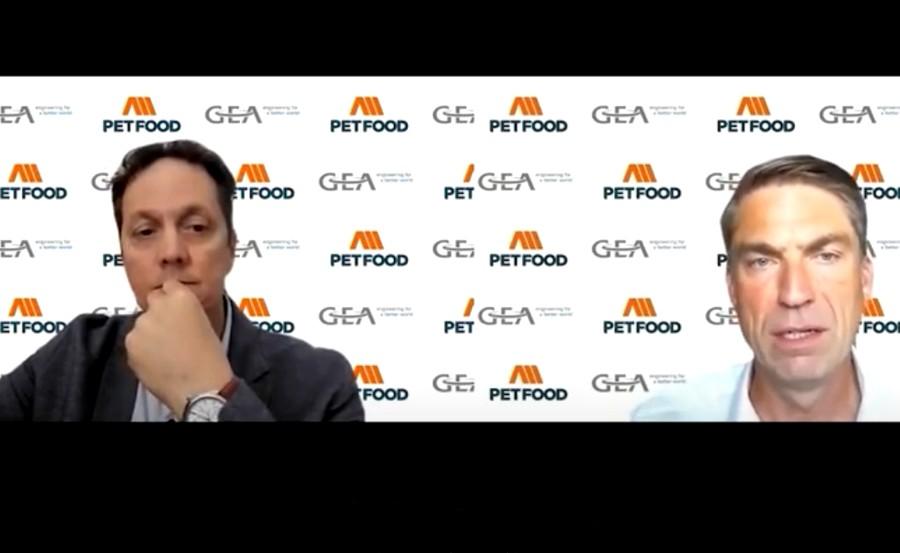 Interviews
Interviews
2+ MIN
15/10/2021
Interview with Klaus Rudolf, GEA Development Manager
Klaus Rudolf; GEA Development Manager, agreed to an interview conducted by All Pet Food team to discuss a bit about the company, its leadership worldwide and The Pet Food Technology Day, an online event to be held in just a few days !!! Iván Marquetti was in charge of the interview, which focused on GEA's technology, as well as the pet food areas involved. Starting from a brief introduction to the company and its world-class patented cutting edge technology, Klaus referenced the history of the company, focusing into GEA's patented technology and its flexibility in the Pet Food production. Klaus covered from equipments that can perform different functions in a dry food extrusion line, to one machine that can perform many of these functions by itself, revealing the oustanding flexibility of its technology. ent for pet food plants in the region. He also emphasized on GEA's presence in Latin America with the acquisition of GEA-Pavan in 2017, and the subsequent sale of equipment for pet food plants in the region. Finally, the interview focused on the pet food production boom worldwide on the wake of the pandemic, its trends and new ways of feeding our four-legged friends, until reaching The Pet Food Technology Day, an online event organized by GEA, which will be held on October 26th, with an important line up of speakers, the current production issues , new trends and solutions for pet food. Undoubtedly an interview nobody can miss, which also contributes to the modern pet food production If you want to register in The Pet Food Technology Day and stay updated, just Click HERE. by All Pet Food
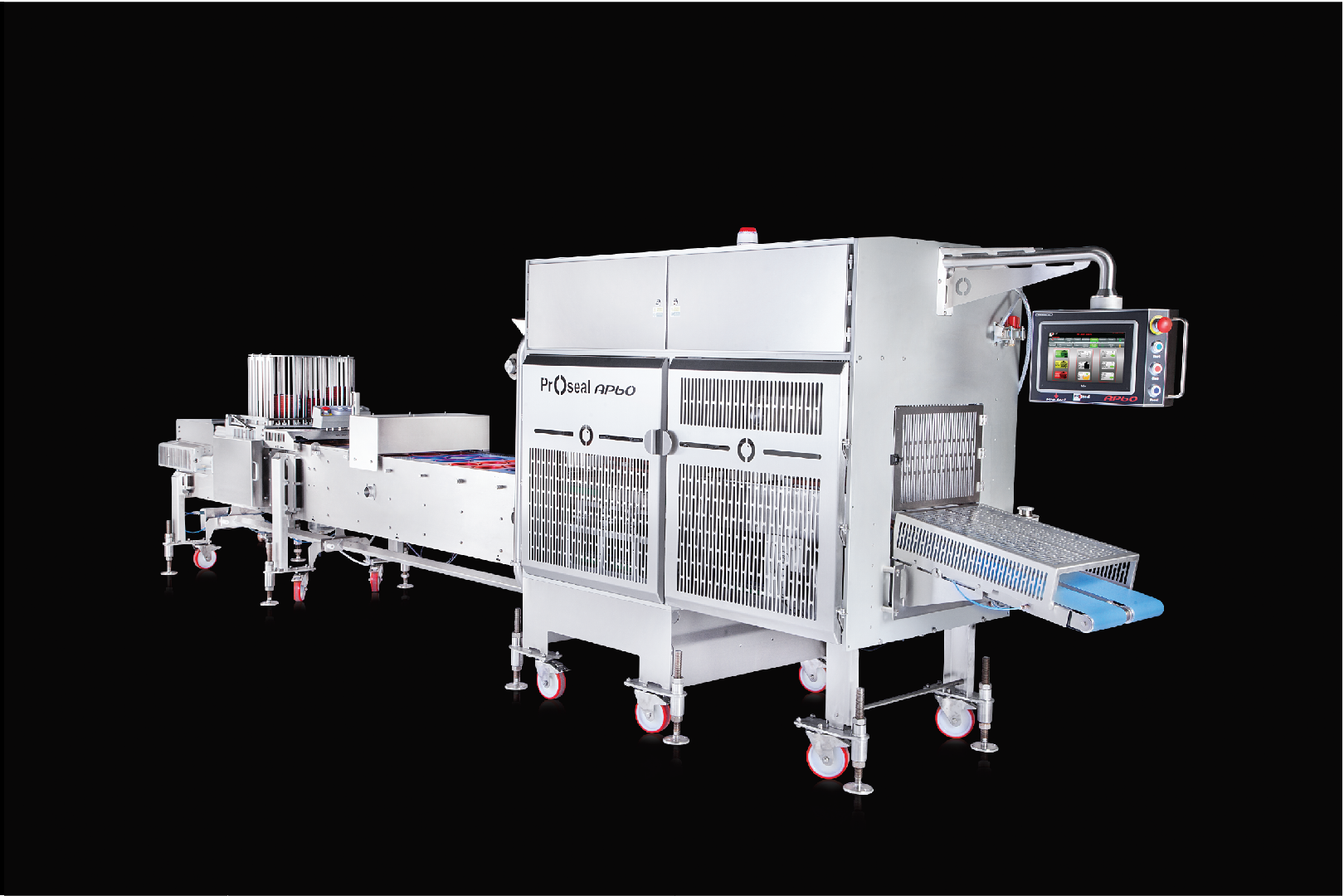 Packaging
Packaging
2+ MIN
15/10/2021
JBT Proseal: Meeting the pet food quality challenge
A recent report from Transparency Market Research has predicted a CAGR of 6% in the global pet food market over the next decade, reaching an expected value of US$168.3 billion by 2029. Increasing consumer demand for premium quality products has led manufacturers to use high quality materials and ingredients while streamlining production techniques and processes, with the corresponding need for appropriate quality packaging to reflect this premium image. The comprehensive Proseal tray sealer range has the flexibility to perform in a wide range of disciplines, including Gas Flush Modified Atmosphere Packaging (MAP), Vacuum MAP with lid control and Skin Packaging. In particular, the company's advanced sealing systems ensure absolute control and integrity of the seal between the lid and the tray, a vital requirement for applications that incorporate a substantial controlled-retortion-process or other High Pressure sterilization processes after sealing. The tray sealers also include several Proseal-developed features that help to maximize performance, reliability and efficiency, such as the company's pioneering Eseal® energy saving technology, ifilm™ intelligent film monitoring, and ProTect™ RFID access login system that provides full audit trail visibility and layered security. In addition, Proseal's AP60 linear conveyor tray sealing system is able to provide bespoke automated solutions for high speed applications and demanding production conditions, based around individual customer production processes and requirements. Among the system's many features, the length and width of the indexing conveyor can be customized to accommodate de-nesting and filling requirements. Full or partial vacuum systems can be incorporated to enable post seal processes such as retort or High Pressure Processing (HPP), and X-ray inspection systems and checkweighers can be included after sealing for enhanced quality control. The AP60 also offers seamless integration with third party process equipment including depositors, multihead weighing applications and CIP systems with sealing speeds of up to 240 packs per minute. Furthermore, Proseal's AP60 benefits from shared technology across the Proseal machinery range. Options can be specified and retro-engineered, allowing a more flexible approach to each distinct application. All Proseal machines offer a user-friendly interface and easy to maintain design, with a rugged and hygienic food industry approved construction geared to full washdown protection. "As the pet food market continues to expand, we are keen to provide solutions for companies requiring a significant upscale in their production of core products in new packaging formats, which can be met on one machinery platform," says Tony Burgess, Head of Sales and Control Systems, Proseal. "The flexibility of our technology and the wide variety of machines available, including fully integrated conveyor systems, mean we can offer a full turnkey production line solution which is key for this particular market. We are delighted that our expertise can help companies to achieve a point of differentiation in the competitive pet food sector." Learn more about Proseal's packaging solutions. Source: JBT Corporation
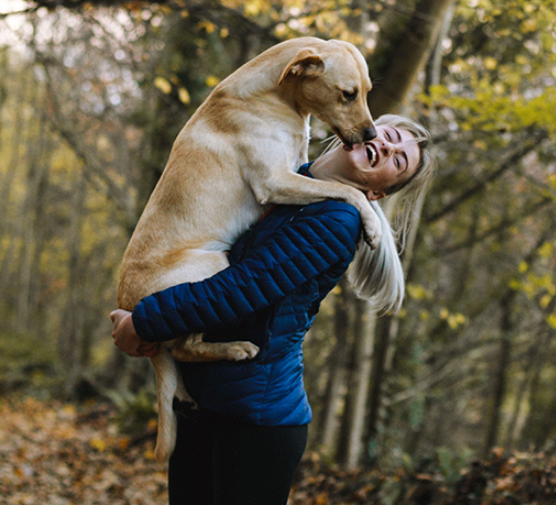 Trends
Trends
4+ MIN
12/10/2021
Sustaintability in the Pet Food Industry
The unprecedented levels of pollution, the constant thawing of glaciers and the poles and the extinction of species, are beginning to alarm countries around the world that are already taking measures and launching policies to reduce environmental impact. This is how sustainability emerges as a key concept to solve environmental problems. From being an emerging trend, it became a fundamental pillar to transform human practices in a radical way. The world of pets is not an exception. For some years now, the food industry has shown a growing concern to implement greener means of production, as well as to produce products with a positive impact on the planet. These changes, which have been brewing for some time, go hand in hand with the constant need to improve the quality of life of pets, being a fundamental part of it, not only the food, but also the place where they live. Today, 3 out of 4 consumers in the world expect companies to invest in the sustainability of their products. This is clearly visible in the new generations, who are increasingly committed to environmental problems. In fact, on March 15, 9,000 people representing different organizations and governments from all Latin American countries met virtually at the "Forum of Sustainable Development Countries" to endorse the 2030 Agenda for a sustainable future in the region. Sustainability consumer archetypes There are different types of sustainability consumers who are located at different ends of the curve of sustainability adoption, going from the extrinsic (external environment) to the intrinsic (individual environment). The archetypes, based on studies developed by Kerry, are: Inactive Sustainability is important, but it is not a key factor in the purchase decision. They think that the responsibility for taking sustainable action rests with governments and industry. His vision of the subject, therefore, is extrinsic, related to the conservation of resources, recycling and welfare of animals and the community. Prices and lack of intention are the main barriers to acting sustainably. This type represents 51% of consumers who are not motivated by sustainability. Passives They tend to be older: Gen Xers and boomers who prioritize sustainability but are disappointed by the lack of sustainability-related resources, products and planning. Their association is extrinsic to sustainability: environmental protection, animal welfare, animal waste. Price continues to be a key barrier to this archetype. Followers They are the nation's young people, typically young Millennials and Generation Z, who make sustainability a priority, but lack the time and resources to carry out their work. They are in a state of transition, moving from adopting an external vision to an internal vision of the impact of sustainability. They are more likely to switch brands if they don't align with their vision. Pioneers They are the bearers of the torch of sustainability and multifaceted, they have a more mature vision of the subject. The pioneers have internalized the environmental, social and individual impact of sustainability. They are more willing to sacrifice convenience, price, and brand loyalty to support sustainability. It is an archetype with aspirations, influencing family, friends, colleagues and the community at large and representing the largest group of consumers concerned about sustainability, driving the industry to make changes that meet their expectations. The influence of sustainability in pet food The changes that occur in consumers have a direct impact on the ways of producing in all industries. In the food industry in particular, globally, there was an average annual growth of 57% in food and beverage launches with an 'environmental ethics' statement. Sustainability is what drives consumer purchasing choices in Latin America, a region that shows the greatest concern for it. 73% of Latin American consumers say they care a lot about sustainability issues, compared to a global response of 57%. In fact, this growing importance for sustainability has been growing in the purchase of consumers both in supermarkets and in restaurants: 75% of Latin American consumers say they are strongly influenced by sustainability when they buy food or beverages at the supermarket. 72% of Latin American consumers say they are strongly influenced by sustainability when ordering food or drinks in a restaurant. The main drivers of sustainability associated with health and nutrition The transition towards more sustainable practices, especially in health and nutrition, are motivated by different factors related to contributing to well-being and a higher quality of life. The percentages are: Eat more fruits and vegetables: 36% Eat healthy (no more, no less): 35% Exercise, stay active: 31% Limit, reduce sugar consumption: 28% Mental well-being: 26% Healthy aging: 24% Without additives, preservatives: 23% Weight control: 22% Consume fresh food and beverages: 22% Nothing artificial: 19% Limit / reduce fat: 19% Reduce meat consumption: 18% Unprocessed food and beverages: 17% Limit / reduce sodium: 17% Taking into account that there is a process of mimicry between trends in people and the world of pets, it is no coincidence that these motivations are also transferred to the feeding of pets. Pet owners are increasingly concerned with providing them with food that not only provides the necessary energy and nutrients, but also improves their quality of life in various ways, such as those mentioned above. In conclusion, sustainability, today, emerges as the fundamental pillar in the production of food for both people and pets. Consumers are more committed to environmental causes, which is why they are increasingly inclined towards products that have a minimal impact on the planet. It is about improving the diet with quality products, free of preservatives, additives, flavorings, etc., as well as protecting the place where we live and ensuring its continuity for future generations. Source: WMG
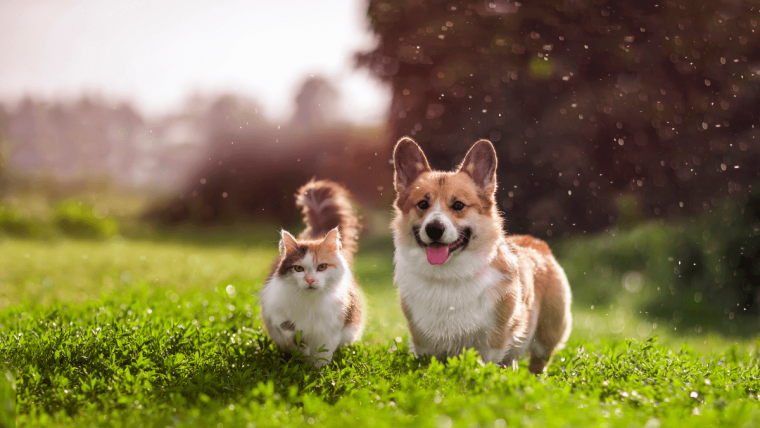 Trends
Trends
5+ MIN
07/10/2021
Organic trace minerals for pets´s mental health
How can we address some of these challenges, especially those related to cognitive function in pets? 1. Take a preventative, nutrition-based approach. Providing proper nutrition is still considered one of the most effective and financially viable ways to decrease an animal's disease risk. An important part of any animal's health and diet is immuno-nutrition, which can be defined as the effect of providing specific nutrients — typically, a combination of certain amino acids, nucleic acids, vitamins and minerals — on the animal's immune system. With the direct link between a healthy digestive system and immunity, the importance of gut health cannot be overstated. Gut health, immunity and the microbiome have also been shown to be linked to cognitive health. Research in this area has proven the gut and brain communicate regularly through a highly complex interactive system. This highlights the important role of nutrition, not only for the growing and developing puppy, but for the aging or senior dog as well. 2. Optimize gut health by increasing microbial diversity. Gut health can be improved and maintained in several ways, but increasing microbial diversity — as well as reducing pathogens and increasing beneficial bacteria, such as the Lactobacillus and Bifidobacteria species — is key. Adding prebiotics, probiotics and postbiotics to an animal's gut health program has been well-researched and established as important for maintaining good gut health. Furthermore, products such as mannan-rich fractions of yeast (MRF) and certain fermentation solubles — including mannan oligosaccharides (MOS) — as well as nucleotides and branched-chain amino acids are being incorporated into pet food for dogs and cats at a growing rate. Senior or geriatric dogs tend to have reduced concentrations of Bifidobacteria species, and studies of MOS have shown that they are correlated with significant increases in beneficial populations, which can help offset the negative effects of age on colonic health. MRF have also proven to be beneficial in pet diets in several ways. They basically provide a source of attachment for certain pathogens and escort them through the digestive tract, preventing colonization and reversing dysbiosis. MRF also support nutrient utilization, help maintain digestive function and enzyme activity and work to control inflammation. 3. Support immunity and cognitive health in dogs and cats with antioxidants. We've looked at how immuno-nutrients affect gut health, but what impact do they have on the overall immune system? Trace minerals are essential in many metabolic and physiological processes, and using the organic, more bioavailable form of these essential nutrients has been proven to be beneficial in multiple ways. Recent companion animal studies of Bioplex®and Sel-Plex® showed that, even when supplemented at much lower levels than their inorganic counterparts, these two products supported and promoted better trace mineral status, bone mineral density, growth and immune measures in both cats and dogs. Certain trace minerals, including selenium, are also known to be important antioxidants. Since antioxidants can help minimize free-radical formation and oxidative stress, including them in pets' diets is often considered an important part of any immune-nutrient strategy to help prevent and managed age-related health issues. Some of the leading age-related health problems in pets include immune-related issues, joint health, cancer, diabetes and heart disease. Two other emerging concerns and interests for pet owners with older pets are cognitive health and function. When it comes to cognitive health, there have been several studies linking antioxidants and their role in counteracting oxidative stress to potential improvements in cognitive performance. It seems that impaired neuroprotection that results from oxidative stress has been implicated in neurodegeneration, and as such, inhibitors of oxidative damage — especially antioxidants — are considered very promising as potential preventatives. Selenium is considered to be not only a very powerful antioxidant but a major agent of immune stimulation as well. Several studies in humans, companion animals and other species have shown that selenium can reduce oxidative damage, optimize immunity and thyroid health, and even help prevent mental decline. The problem with selenium is that its availability, utilization and efficacy depend on the dietary source or form in which it is provided. Inorganic selenium (i.e., sodium selenate or sodium selenite), the most widely used form of selenium, is not only highly toxic; it is also poorly absorbed, can induce DNA damage and can have very strong pro-oxidative properties, making it a poor choice as an antioxidant. Because of toxicity concerns, inclusion rates for selenium are regulated, and the suggested levels are set with an eye toward preventing a deficiency rather than supplementing for optimized immunity and health. As such, it is worthwhile to reconsider our selenium supplementation strategies and find ways to maximize selenium status that, ultimately, support cognitive health as well. An animal's selenium status can easily be improved by substituting inorganic selenium with the organic form of the mineral, such as that included in Sel-Plex. Studies of Sel-Plex have evaluated its potential antioxidant characteristics in several species, including transgenic mice, and the results have shown a substantial increase in glutathione peroxidase and significantly decreased levels of DNA and RNA oxidation. Poor selenium status, on the other hand, has been linked to an increased risk of heart disease. Selenium has been shown to lower markers of inflammation, indicating that it may help decrease an animal's risk of heart disease by reducing inflammation and oxidative stress, which have been linked to atherosclerosis. Since pets are also susceptible to certain heart conditions, implementing nutritional strategies to improve selenium status and, in turn, reduce oxidative stress and any subsequent inflammation could potentially have positive benefits for geriatric pets as well. Conclusion Thanks to the growing trend of increased awareness and interest from pet owners about the overall health and well-being of their animal companions, we can expect nutrition to play an even more prominent role as part of a preventive approach to maintaining pet health. The importance of the pet microbiome cannot be underestimated, as it serves as the foundation of a healthy GI tract, immunity and overall health through all life stages. When looking at antioxidants, the opportunity also exists to make seemingly small changes — like switching from inorganic selenium to an organic source — that can actually have a significant impact on the overall immunity, health and cognitive function of the animal. Immuno-nutrients will continue to be an important part of a targeted nutritional approach to caring for pets, but it is also important to look for product-specific research and validation when creating your pets' health plan. Source: Alltech
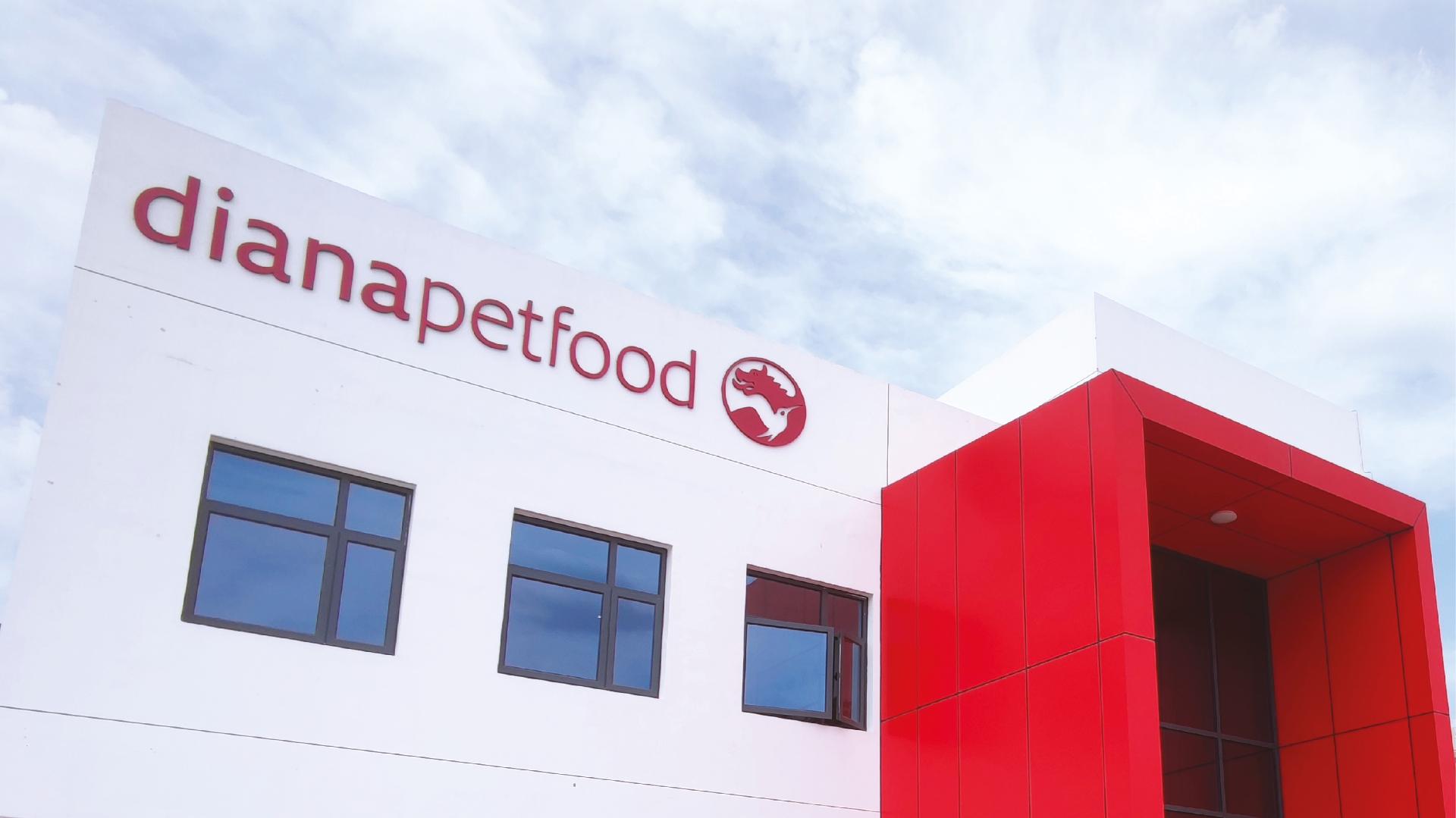 Market Information
Market Information
3+ MIN
05/10/2021
Diana Pet Food to expand capacities in Mexico
Diana Pet Food, has purchased the land to host a new production plant. It will replace the site currently operating in the city of Querétaro. The surface of the new land exceeds the previous one by five times. The building will cover 3,400m2 exceeding the previous one as well.
'We inaugurated our plant in Mexico in 2004 investing in a market that was showing signs of becoming one of the most thriving markets in the world. Today 17 years later, Mexico stands among the five largest producers of pet food in the world. With this new project, we reaffirm our commitment to our clients and get prepared for the new challenges that the market holds for us. We also continue working with the city of Queretaro for our activity' states Diego Maurizio, Diana Pet Food LATAM General Manager.
Diana Pet Food offers a portfolio of products that addresses all needs of the Mexican and Central American pet food markets. The new plant, which should be operating in 2024, will follow the company global standards in terms of quality and food safety and operational excellence.
Juan Manuel Becher - General Manager, Gabriela Velazquez - Gerente Financiera
The closer, the better
The location of the new plant will strengthen the service to its customers; accompanying them in their evolution in an agile, directed way and answering their needs. This approach of Diana Pet Food comes from its long tradition of addressing regional markets with local production sites. The unique local technical and commercial network developed by Diana Pet Food guarantees real proximity and outstanding customer service.
'The Mexican market is evolving and growing by leaps and bounds, and we are committed to accompanying our clients closely, providing them with a better service every day. Our local and regional teams know the Mexican pet food market in depth. We have designed solutions perfectly adapted to local needs' says Juan Manuel Becher, General Manager of Diana Pet Food Mexico.
An Eco-Friendly factory
The design follows the company's latest plants in Colombia and China. From the beginning, they incorporated an eco-friendly design and operation features.The design of this new factory will also follow the company's CSR (Corporate Social Responsibility) strategy to minimize the social and environmental footprint and prioritize sustainability. The building will exert minimal impact on the environment and will also follow LEED (Leadership in Energy and Environmental Design) certification standards.
About Diana Pet Food
Diana Pet Food is the global leader and pioneer of high value solutions improving pets' well-being and owners' satisfaction. The entity provides multiple products and services improving pet food palatability, pet health, and pet food protection. Diana Pet Food is present on five continents with 1090 employees, 18 industrial sites, 18 sales offices and 4 expert measurement centers with 980 cats and dogs.
Diana Pet Food is part of the Symrise's Flavor & Nutrition segment.
Symrise is a global supplier of fragrances, flavors, food, nutrition and cosmetic ingredients.
Further information is available at
Contact: Anderson Conejo
Diana Pet Food LATAM Marketing Manager
 Dogs
Dogs
3+ MIN
04/10/2021
What can probably happen when a dog is left alone?
The most important thing to understand is the dog is a gregarious being, a social being that lives and is conditioned to live in a herd, together. He can't and doesn't want to live alone, so it is very difficult to find a hermit dog. In this context, you have to understand the dog and his behavior. How long can my dog be left alone? Is he getting revenge when he breaks things in my absence? Why is he compulsively barking when I'm not around? These and many more questions are asked by a dog owner or guardian when that dog is left alone and problems appear. The maximum time a dog can stay alone is not a fixed and constant figure, but depends on many factors. One of them is age, it is not the same to leave a puppy alone for a long time than a mature adult dog or an old man. Puppy dogs, due to the need of their age, of very marked activity, cannot stay alone for long without making some express expression of their anguish at being without company. The same thing happens with old people, but due to the clear increase in emotionality in all its aspects as a result of age, to which is added the need to satisfy physiological urgencies more frequently that force them to transgress the learned rules. Another more than important factor is the state of physical health of an animal. Being alone for a long time, he cannot satisfy our expectations of harmonious coexistence. Race can play a role. In some very temperamental or very barking breeds, being alone can increase the chances of a convulsive and noisy stay, not compatible with our tranquility and that of the neighborhood. The dog's own character is very important when deciding how loneliness will influence its way of reacting to lonely time. The length of time the animal has been living in the house is very important when defining its reaction to loneliness. A dog accustomed to the house, to its environment, is not the same as an animal in the period of adaptation to a new environment. Complying with the minimum tolerable physiological interval in those animals that have been educated to relieve themselves in certain spaces (park, sidewalk, etc.) is essential to evaluate behaviors in the face of loneliness. As a general rule, a dog cannot be home alone for more than 8 hours without going out. Going out for the dog has the same effects that reading the newspaper has for us: it informs us, refreshes us and let us know what is happening in the world. The exit in a dog is not replaceable by a great bottom far from it. The dog needs to go out to "gossip" always with a collar, leash and bag to collect his fecal matter, but he always needs to go out. If it is not done in a timely manner, signs of serious pathologies may appear such as separation anxiety characterized by lack of appetite, compulsive barking or howling, elimination in inappropriate places, destructive mania and senseless behaviors such as wandering in circuits or something similar. Source: Infobae
 Palatants
Palatants
1+ MIN
01/10/2021
Cat and dog behaviors around the bowl: how pet owners decode the signs of food enjoyment
Beyond that food consumption measurement, surveys conducted in-home with pets and their people identify pertinent behaviors that reflect a pet's level of enjoyment. 'She meows after the meal…' 'I was just opening the bag and he was already running to his bowl!' 'Look at them, they finished their bowl and now they are sleeping!' In your opinion, are these behaviors positive or negative? If you don't know, ask the owners! Enjoy the full article HERE
 Cats
Cats
4+ MIN
30/09/2021
Four ideas to keep our cat busy
"Although our cats no longer need to hunt to eat, they retain the need to pounce on objects and play," experts say. A bored cat is a destructive cat, so it is necessary to have different options to entertain a cat at home. Felines remain in their homes and, unlike dogs, require greater imagination on the part of their owners so that they do not get bored and cause damage to the home. Playing with them will be a very beneficial activity, not only for adults and children, but for the pets themselves, since by playing with the cat the mental health of the animal is taken care of and the emotional ties with it are strengthened. "The games with the cat are important to provide the feline the stimulating environment that he needs to stay healthy and happy", indicated a study on feline behavior carried out by the University of Tufts, in Massachusetts, USA. The ancestors of the urban cat needed to hunt insects, birds, mice, and other small mammals to survive. "A wild cat can hunt between 10 and 20 small prey a day," explained scientists from the University of Ohio, USA, who carried out research on the importance of play for cats. These wild cats are prepared to pounce on any possible prey as soon as they detect it. "Although our cats no longer need to hunt to eat, they retain the need to pounce on objects and play," said these experts. Therefore, they explained, games are a basic need, which keeps the furry friend happy and motivated. Playing with the cat also helps its owner to bond with his pet, in addition to helping him smile more and be happier. Depending on the type of game, toy or activity and the interaction that the activity needs, the time that must be dedicated will be. If he gets bored easily, it is because he did not find the game attractive. There are many elements to entertain cats, from toys to food, but the best way to do it is by playing with them. Cats are a lot of fun, but depending on their personality they can be troublesome. Especially puppies and even adults are full of energy and eager to practice their predatory behavior all day and sometimes at night as well. Without a plan that allows coexistence, this could mean that the hands and feet of the closest humans will become prey. Therefore, directing this energy and practicing predation through acceptable channels is the key to a positive and long-lasting relationship with a cat in the home. Here are some tips to get feline energies back on track 1 - Play with him twice a day for five to 15 minutes Specialists recommend that direct contact with the body is not part of the game. Cats need the consistent message that the body is not to sink its teeth or claws. Toys should be used to recreate the chase a cat needs to do. It is best to use something light, such as a crumpled piece of paper, or a fishing pole as a 'mouse'. It is good to start with the toy near the cat and then remove it. Cats are innately attracted to short, quick movements away from their body. You need to be careful of hair ties, bows and laces that turn into dangerous intestinal obstructions if accidentally eaten. Always end the play session by letting the kitten catch its prey and then give it a treat. Cats need to complete the hunt-catch-play-eat cycle to relax and know that playtime is over. Otherwise, they will be frustrated. Another fun way to play is to distribute several boxes of different sizes around the room. Cereal boxes, shoe boxes and even some larger ones can be used. Now, it only remains to hide an edible prize in them and invite the cat to find it. Another fun alternative to cat play is to put this paper bag inside a cardboard box. The cat will be able to jump into the box and out during the game. 2 - You have to provide the cat with places to explore, climb and hide in its environment To attract them, put treats in various places. This will help them establish a routine of going where you want them to rest and relax. Cats' fondness for shelters, such as boxes, closet interiors, among others, can come in handy to create a great and fun game; Since cats love boxes, you can spread some around the room and hide edible treats inside. The intelligent feline will not take long to recognize the pattern of his play if, upon finding him, his owner offers him an affectionate hug and shows him his joy. 3 - Two cats The advantage of having two cats at home is that they can play together is the best way to keep them busy and happy. It should be taken into account that incorporating a new cat into the home where there is already another feline is a complicated task, although not impossible. The simplest thing will be to raise two kittens together, it is the best way for several cats to live in harmony. 4 - Never miss the opportunity to recreate the hunt Food in a bowl is a missed opportunity. Divide the food for the day into many small portions and use hunting feeders to hide their food around the house and puzzle feeders to keep them busy. Save half of the day's food to hide overnight; in this way they can hunt and their owner sleep. Source: Infobae
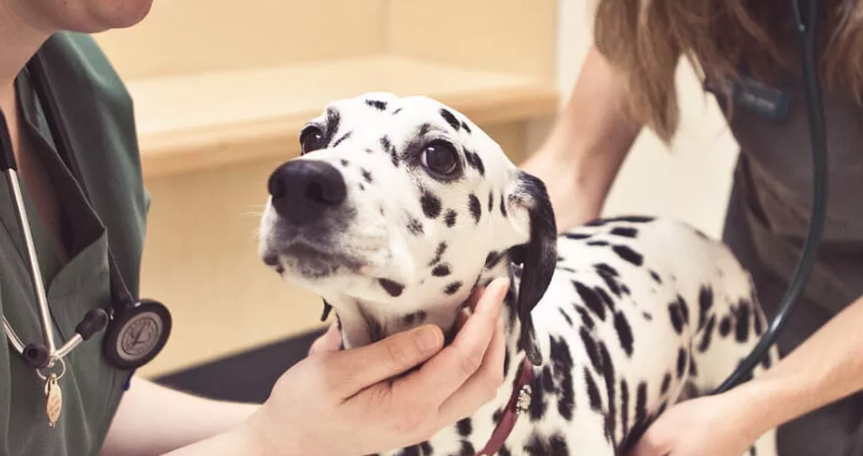 Dogs
Dogs
3+ MIN
28/09/2021
World Atopic Dermatitis Day: The most prone dog breeds
This disease is closely linked to allergy, but also an important genetic component, so there are some breeds more predisposed than others. Some of these breeds are the Shar-Pei, the Golden and the Labrador Retriever, the Dalmatian, the Boxer, the, the Lhasa Apso, the Shih Tzu, and a number of terrier varieties. These are the Scottish terrier, the West Highland white terrier, the Boston terrier, and the wire-haired fox terrier. Regarding allergies, it must be remembered that 80% of animals with atopic dermatitis are allergic to dust mites (Dermatophagoides sp.) And / or warehouse mites (Tyrophagus sp., Acarus sp. And Lepidoglyphus sp.). But not all allergies are caused by mites, they can also be food-borne, and end up affecting the skin of companion animals. So even though they are not the most common cause, it is important to keep a close eye on food allergies. Hill's Pet Nutrition recalls that, to deal with food allergies, it is best to consult with the veterinarian to, among other things, design elimination diets with hydrolyzed protein or that contain egg as a single source of intact animal protein, a novel protein which prevents 96% of food allergies in dogs. In addition, it is committed to a new line, which combines the prevention of both food and environmental allergies, which allows to alleviate the itchiness of the dog regardless of the cause. For its part, Royal Canin, in addition to recommending elimination diets with hydrolyzed protein, advocates providing pets with a series of nutrients to strengthen the natural defenses and healing of the skin to face the effects of dermatitis atopic, always under the criteria and supervision of a veterinarian. IMMUNOTHERAPY AGAINST CANINE ATOPIC DERMATITIS To combat the origin of allergy and atopic dermatitis in dogs, there is the option of immunotherapy. In fact, this type of treatment is already recommended by the World Health Organization in people, since it is specifically aimed at the cause of the problem and can alleviate or totally cure the symptoms. In this sense, the bio-pharmaceutical company LETIPharma has incorporated a range of immunotherapies for dogs, and has addressed this problem in its Chester colloquia, in which it has brought together veterinary and human health experts to learn how allergy and allergies affect them. dermatitis. Furthermore, in recent years there have also been advances in treatment. One of the latter is the monoclonal antibody from Zoetis (Cytopoint), which has also been indicated as a treatment for pruritus associated with allergic cases, including canine atopic dermatitis. Zoetis already had oclacitinib (Apoquel), one of the recommended treatments against this problem. However, there are also other options, with which it can be combined, such as glucocorticoids. Precisely in this area, a recent study highlighted that hydrocortisone aceponate (Cortavance by Virbac) in spray format is effective in improving the reduction of itching, especially when the dose of oclacitinib is reduced. SKIN HEALTH TO TREAT AND PREVENT CANINE ATOPIC DERMATITIS It should not be forgotten that although the main cause of canine atopic dermatitis is allergy to mites, it is still a dermal disease, so proper skin care is also very important to deal with it. The idea is to promote balance in the bacteria that live on the skin to have an adequate skin barrier and treat possible pyodermas. In this area, you can find different therapeutic options in shampoo format, such as Douxo by Ceva, which allows the balance of the microbial flora to be reestablished. Likewise, there are other products to directly treat bacterial infections on the skin, such as Malaseb, from Dechra, which treats Malassezia dermatitis; a skin disease that sometimes occurs underlying allergic processes such as atopic dermatitis. Finally, this year another novelty in treatments arrived on the Spanish market. It is about Phovia, from Vetoquinol, which with its FLE light energy accelerates dermal regeneration in different dermatological disorders, such as pyoderma, which is usually closely related to the processes of atopic dermatitis. Source: Animal´s Health
 Trends
Trends
5+ MIN
23/09/2021
Data analytics for Pets
How is Mars Petcare using data to help dogs and cats? Dogs and cats can't talk, so they can't tell us when they start to feel ill or otherwise may need healthcare. At Mars Petcare, we are using data and analytics to reveal new insights into pet health. By identifying changes in health as soon as possible, we hope to reduce the impact that disease can have on pets' wellbeing. We already have diagnostic tools that can help predict the onset of disease, technology that can detect changes in pet behaviour that could signal a change in wellbeing and we are using leading-edge data science applications to enable a new era of preventive pet care. And it's not limited to healthcare. There are several areas of our business where we're using data science, from optimising supply chain and hospital operations to personalised marketing and retail assortment. We are positioned to collect information on the behaviour, health and genetics of pets around the world through our nutrition, health and pet service businesses – and we want to use that privilege to be a force for good. Mars Petcare has a number of pet food brands, including Pedigree™ and Whiskas™, as well as Royal Canin®, our health nutrition brand. We're also very proud of our global network of more than 2,500 veterinary hospitals and diagnostic labs that employ more than 65,000 compassionate veterinary professionals. We've got a DNA business called Wisdom Panel™, while Whistle™ helps us understand pet health through activity and behaviour tracking. Scientists at the Waltham Petcare Science Institute work to advance science to better understand pets' needs and overall wellbeing. The scale and granularity of this data across our businesses provide a phenomenal opportunity to generate insights that will help enable pets to live happier, healthier lives. What is your latest breakthrough? Pet Insight Project is a pioneering mission to collect and interpret the health stories of hundreds of thousands of dogs. It's enabled by Whistle FIT, a smart, collar-worn device that captures information about a dog's behaviour – like a fitness tracker for dogs. It has a three-axis accelerometer to sense how much a pet moves up to 150 times a second. Pet Insight Project invites citizen scientists to send in videos of their dogs doing certain activities, such as eating, drinking and scratching, whilst wearing the Whistle device. By pairing the data from the device with the video footage, we have built ML algorithms that can detect when dogs are exhibiting certain behaviours. We can now detect previously unseen behaviour patterns that could be early indicators of changes in wellbeing. For example, an increase in the amount of time a dog spends drinking each day could be a sign of ill health, such as diabetes or kidney disease. We can notify the pet owner of these changes through the Whistle app, often before they have noticed the change in behaviour themselves. How does your data help vets? Profession wide, it's estimated that the anaesthetic mortality rate is twice as high for cats as it is for dogs. We applied Natural Language Processing to unstructured medical notes and processed data from 1 billion raw medical notes, creating 300,000 structured anaesthesia records. Our research to try and better understand the risks associated with feline anaesthesia mortality has identified six unique risk factors. The next stage of this project is now in development – a predictive algorithm that can provide real-time feedback to veterinary teams to help make anaesthetic procedures safer for cats. Tell us about your work in AI and ML Our AI and ML algorithms are written mostly in-house, but we also partner with third-parties and academic institutions. Another great example is our application of ML to X-rays. There is a dearth of veterinary trained radiologists globally, and a huge year on year increase in demand for radiological reads by veterinarians. Using 2.2 million X-rays, we have built ML models that can identify 42 findings in thorax and abdominal X-rays in cats and dogs, with many more findings to come. We can now provide a service to veterinary hospitals where ML can be used as an initial assessment for an X-ray. We're also using predictive models to optimise our retail assortment, so that we can provide pet owners with more tailored product offerings. How can data help in early disease detection? Chronic kidney disease (CKD) is the number one cause of death for cats over five and affects 30% to 40% of all cats over the age of 10. RenalTech™ is an AI-driven diagnostic tool that can predict whether a cat will develop CKD up to two years before traditional clinical diagnosis. It was developed by data scientists at Waltham Petcare Science Institute using the medical data of more than 150,000 cats and 750,000 veterinary visits over 20 years. It's available to veterinarians through our diagnostic lab Antech's network. By having an early insight to the onset of disease, pet owners and veterinarians can partner to create a proactive, personalised care plan for the pet. What does the future look like for pet care? A common use of AI in human health is the development of predictive models: where a computer can spot very subtle patterns in data that are an early indicator of a health condition or disease. Because so many diseases have better outcomes if they are picked up and treated earlier, predictive models have the potential to be transformative for pet healthcare, as in human healthcare. We believe that going forward, we'll continue to tap into the potential of new technologies and tools to drive preventive and more personalised care, which can allow us to work harder and smarter to improve the lives of our pets. Already scientists are using the power of AI to not only understand how a pet's genetics and behaviour can share powerful insights about their overall health, but to also help predict disease in pets. Individualised nutritional support may ultimately help in the prevention and treatment of certain diseases. In the future, veterinarians and pet owners will be able to partner even better to keep pets healthy and happy. What motivates your team? Pets make our lives better, and we're privileged to have the opportunity to use science and data to make their lives better too. By responsibly harnessing pet data, we have the opportunity to change the lives of millions of pets and the pet care industry. What motivates and unites us is our purpose: A better world for pets. Source: Sunday Times
 Trends
Trends
4+ MIN
22/09/2021
Por Luciana Chippano
Apple vinegar in dog food?
Vinegar is a combination of acetic acid and water that is obtained through a two-step fermentation process. The U.S. Food and Drug Administration requires vinegar to contain at least 4% acetic acid, but it can vary up to 8%. Vinegar contains a significant amount of vitamins, mineral salts, amino acids, and polyphenolic compounds. Applied studies The FDA has stated that apple cider vinegar contains only trace amounts of vitamins and minerals except for potassium (11 grams per tablespoon). But despite not overflowing with essential nutrients, it is beneficial for the health of people and animals. Glucose reduction In 2010, the research journal Annals of Nutrition and Metabolism published a study showing that the anti-glycemic properties of vinegar reduce blood sugar levels that tend to rise after a meal in a healthy adult body. These results are consistent with a 2006 Japanese study that showed that eating vinegar with food prevents increases in blood sugar. A 2005 study conducted by Arizona State University evaluated patients with type 2 diabetes, prediabetes, or no diabetes symptoms, while they ate an 87g carbohydrate breakfast right after drinking a glass of water with 2 tablespoons of apple cider vinegar or a placebo. Consuming apple cider vinegar water was found to slow the rise in blood sugar in all three groups, by as much as 34%. Additionally, based on other rat or test tube studies, the researchers speculated that vinegar interferes with the absorption of carbohydrate-rich foods. Benefits of apple cider vinegar Those in favor of the use of apple cider vinegar in dog food claim that it is an excellent ingredient to maintain the acid-alkaline balance of the body, and also helps with digestive health, to fight allergies and even parasites such as fleas, ringworm, ticks, fungi and bacteria, skin problems and even bladder infections. Better absorption Apple cider vinegar aids digestion by increasing stomach acid levels, resulting in better absorption. Apple cider vinegar promotes the growth of beneficial bacteria in the digestive tract of dogs. Prevention of malignant viruses and bacteria Vinegar contains antiseptic properties that help prevent the growth of harmful viruses and bacteria in the digestive tract. Plus, it doesn't interfere with the body's beneficial bacteria, the immune system's first line of defense against harmful microbes. Arthritis This condition of chronic inflammation of the joints is a fairly common disease in both animals and humans, and one of its causes is believed to be the accumulation of toxic waste in the tissues, which subsequently causes irritation, something in which The addition of vinegar in canine pet food formulas may help. Several studies have shown that apple cider vinegar has a significant impact on pain caused by arthritis and that it also slows its progression. Blood pressure Potassium, the most highly concentrated nutrient in apple cider vinegar, is beneficial for both your heart and blood pressure, and helps prevent stroke. Osteoporosis The manganese, magnesium, silicon and calcium present in apple cider vinegar have a positive impact on the maintenance of bone mass, essential to prevent the development of osteoporosis. Constipation When we add fiber to the diet, such as the pectin in apple cider vinegar, we are helping the body to have regular and adequate bowel movements, which prevents the body from reabsorbing toxins and waste. Cataract prevention Apple cider vinegar is good for preventing the development of cataracts, since the beta-carotene it contains provides antioxidant properties that are very beneficial to fight free radicals, a molecule that causes alterations in the structure of the ocular lens. Fatigue Today we live exposed to higher levels of stress than in ancient times. And that, of course, affects animals as well. Stress causes the elimination of lactic acid, which can lead to fatigue and which, in turn, can be combated with the amino acids contained in apple cider vinegar. The enzymes, as well as the potassium it contains, also help maintain energy and vitality. Metabolism Currently, a large percentage of pets do not get enough exercise which, together with poor quality food, regularly leads to overweight. Reaching and maintaining a healthy weight contemplates an effective and efficient metabolism, and in this the malic acid and tartaric acid contained in apple cider vinegar help, since they balance the acid content and eliminate the harmful bacteria found in the digestive tract. Muscles Lactic acid in the muscles is the cause of muscle pain and stiffness. Apple cider vinegar can help break down acid crystals, making them easier to remove from the body. This is especially good for competition or training animals. Summary Apple cider vinegar can provide countless benefits to the health of canines, and it is a component that, adding it in small doses to pet food formulas, can significantly improve them. From the industry, we can promote studies and research to deepen our knowledge of its advantages to introduce it to more and more offers on the market. What do you think of this ingredient? By: All Pet Food
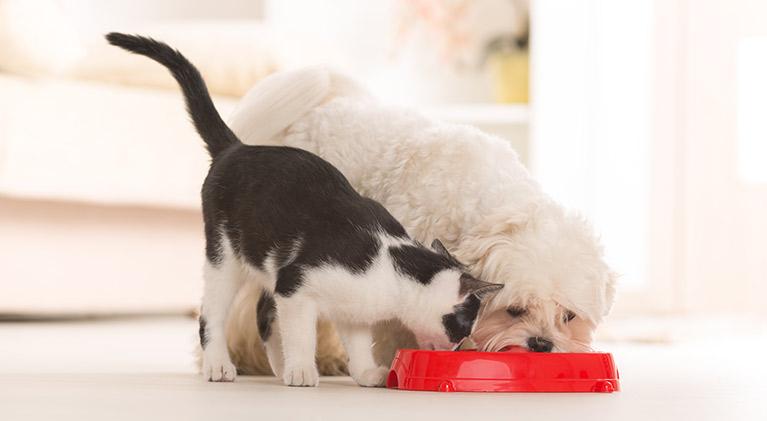 Trends
Trends
3+ MIN
20/09/2021
JBT FTNON: at the cutting-edge of pet food innovations
Through energy-efficient, easy-to-maintain and cleanable systems, FTNON is delivering a range of solutions to the pet food industry, which are helping customers maintain a consistent, premium quality, while also – in a highly-competitive industry – keeping running costs as low as possible.
'The pet food industry is really booming at the moment, with people tending to buy more premium products than in the past where you have more meat in a can or a pouch,' explains FTNON's Joost Lotgerink Bruinenberg. 'We see that pouches are seen as more of a premium product, and demand is growing, for both cats and dogs.
'That's the trend and you see it when you go into a supermarket: five years ago, it was a few metres, now it's one big lane for dry and wet pet food, so the customer has more choice. And the big players are also investing in new factories to fulfil the market demand.'
Plant-based foods
Another major emerging trend is in meat-replacement products. Although not significant in pet food at the moment, Lotgerink expects the category to follow the importance of the trend in human foods in the near future. 'Given the shortage of meat in the industry, this is likely to be a strong trend in pet food in two-three years' time,' he predicts. 'Companies are already thinking about it and are looking to change their recipes to be more plant-based.'
Sustainable solutions
FTNON's solutions for wet pet ood begin with meat preparation before entering an emulsion hopper and subsequently an extruder where the meat is made into 'ropes'. Following steam cooking and cooling, the product enters the cutting stage to be made into standard or irregular chunks. These are then conveyed into a can or pouch for filling and closing. Using custom-made hoppers, plus steam and cooling tunnels, as well as the extrusion system, FTNON's systems can handle small capacities of 300 kg up to 5,000 kg, depending on customer needs.
Energy-efficiency is a key element of a system designed to be as modular as possible, using the same components or spare parts. Being easy to maintain means cleaning times can be shortened, while there is a strong focus on achieving a consistent output in terms of texture, color and flavor at a premium quality.
'We are trying to achieve a system which is energy-effective,' says Lotgerink. 'We need to use steam to cook the product and of course heating it costs energy, but by constructing and insulating the hood in a specific way, we don't use so much steam and therefore we are much more energy-efficient compared with others in the industry.'
'Customers are looking at sustainable systems: they don't want to pay so much for utilities, so we try to be really effective in that way, and it's something we're looking to develop more and more.'
Further improvements are already underway for FTNON's pet food solutions, with work being done to refine systems for irregular chunks, while JBT's Internet-of-Things iOPS program will also be integrated. But perhaps most important of all is FTNON's worldwide reach, thanks to JBT. 'Our pet food solutions are tailored to customer needs, but through JBT we also have a local presence to serve the customer, globally,' adds Lotgerink.
Source: JBT Corporation
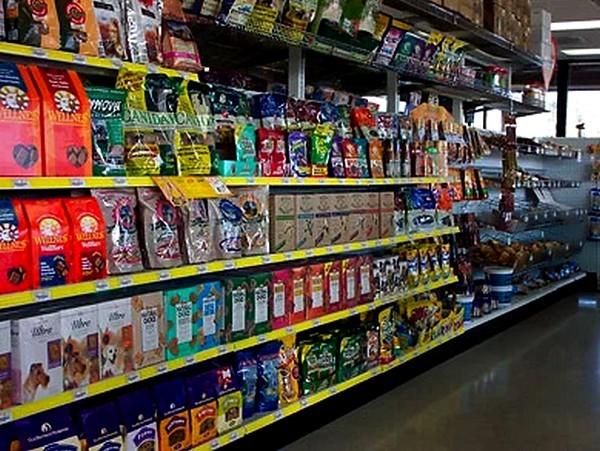 Trends
Trends
4+ MIN
17/09/2021
How to read properly pet food labeling?
It is common for owners of companion animals to have doubts when it comes to what food to choose for their companion animals, whether they are dogs or cats. For this reason, the animal health company Virbac, which has the Veterinary HPM line of feeding for companion animals, gives some keys to guide them when reading the label. First of all, they advise not to be fooled by packaging claims. 'If you visit the animal feed section of any supermarket you will see how colorful and striking it is. Sacks of strong colors and with messages such as chicken flavor, 'rich in chicken and rice', 'natural', 'super-premium' ', they advice from Virbac. However, they remember that, "far from what is highlighted in the package", you have to go to the "small print" and analyze all the ingredients. "When we find the slogan' chicken flavor 'or any other protein, we already know that chicken may have nothing and that this flavor may simply be the result of a mixture of flavorings," they point out. On the other hand, they explain that the mention 'with chicken', 'with veal' etc. indicates that it must contain at least 4%, but that protein can come from by-products such as heads, crushed bones, viscera or legs, that is, the protein source will not be of quality. The next step is when you see the statements "rich in chicken and rice," for example. "Here the minimum percentage of chicken must be 14%, but its origin can also be by-products", they add. "If the source of animal protein appears as is: 'chicken', 'lamb', 'salmon', etc., the minimum content already rises to 26%, but by-products are still allowed,". Therefore, it is when mention is made of 'chicken meat', when it is only evident that it does not come from by-products and must contain a minimum of 26% chicken meat. Regarding this, they point out that it is not the same that the meat is fresh or dehydrated. "If the meat is fresh, we must know that a high percentage of moisture will be lost during processing, so that amount of fresh meat will be reduced in the final product," they clarify. On the other hand, if the meat is included already dehydrated, there will be no loss of moisture during manufacturing and the indicated amount of that source of animal protein will be closer to that of the final product. LOOK FOR THE INGREDIENTS AND READ THE LIST CAREFULLY 'Normally, we can find the ingredient list on the back or side of the package and we should always read it before buying a dog or cat food. As also happens in human food, the ingredients must always appear in descending order, that is, they must be written in order from highest to lowest amount in which they have been used to create the product ', they detail. Thus, they advise that, since cats and dogs are carnivorous animals, if a dry food begins its ingredient list with 'rice', 'corn', 'cereals' etc., first, it would not be conforming to what a carnivore should eat. Another indicator of poor quality that they indicate is the use of vegetable or animal by-products, since anything is included here, it is difficult to get an idea of the origin of the raw materials. "Taking into account the above, what tells us that this product has an acceptable quality? Without a doubt, the fact that the first ingredient is of animal origin', they affirm from Virbac. In this sense, they explain that it will normally appear as fresh or dehydrated meat, accompanied or not by a percentage. "Next, the rest of the ingredients will appear and make sure there is not an excess of cereals, legumes or vegetables," they point out. Other ingredients that can be found in dry pet food are probiotics, fibers, chondroprotectants, as well as different synthetic nutrients. THE IDEAL PET FOOD: HIGH IN PROTEINS AND LOW IN CARBOHYDRATES Taking the above into account, Virbac recalls that cats and dogs are carnivores and their diet must be adapted to this condition. "The food of our animals is the basis of their health, so we must opt for the best possible quality," they say. For this reason, they insist that the premise of "high in animal protein and low in carbohydrates" must always be taken into account, as we promote from the Virbac Veterinary HPM range of food. Source: Animal's Health
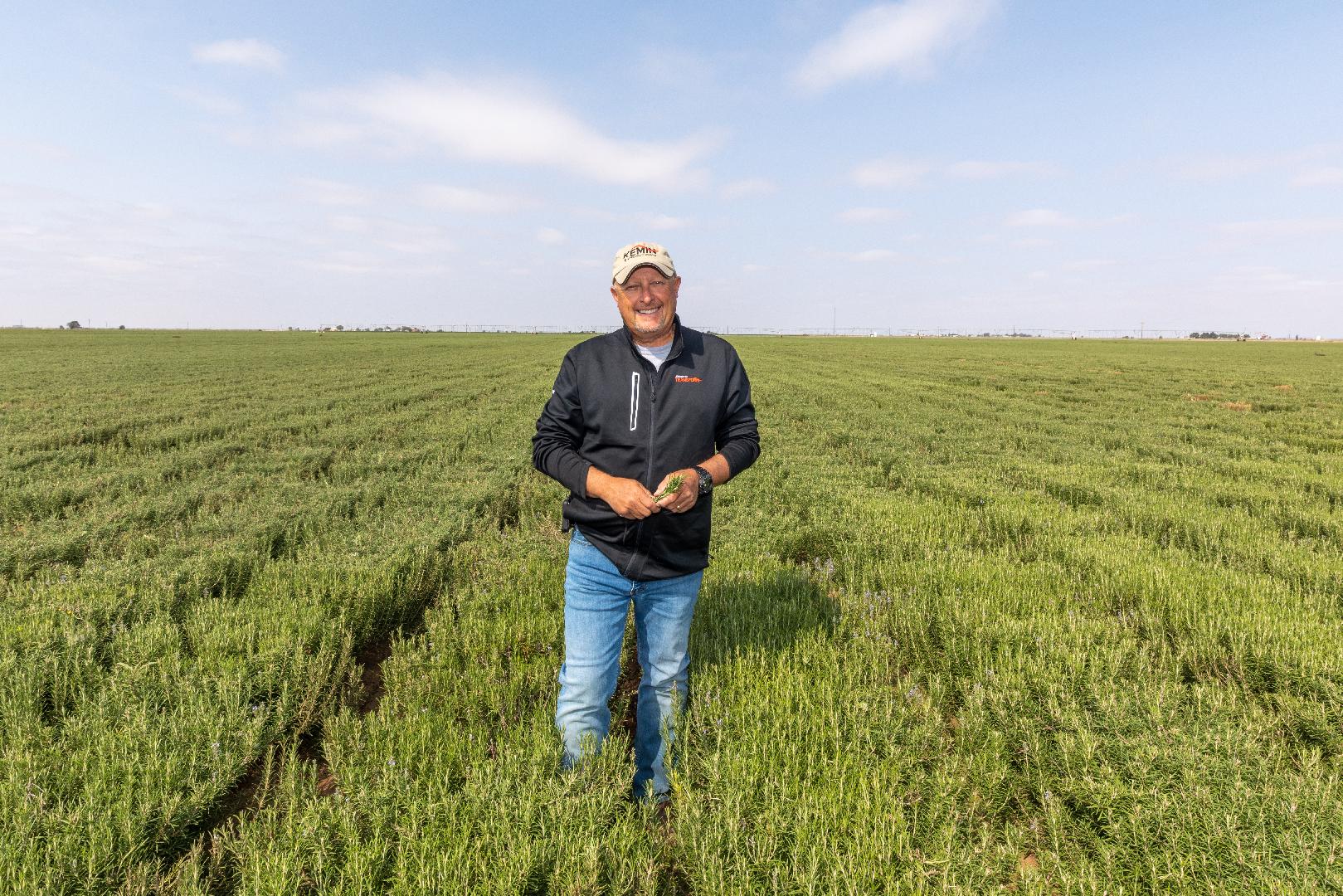 Vegetable Origin
Vegetable Origin
2+ MIN
16/09/2021
Kemin Industries celebrates 25 years of rosemary innovation
Kemin Industries, a global ingredient manufacturer that strives to sustainably transform the quality of life every day for 80 percent of the world with its products and services, is celebrating 25 years of growing its proprietary line of rosemary to create sustainable solutions for foods. Kemin pioneered the use of rosemary molecules in ingredients in the late 1990s and has since established itself as a leader in the market. 'The Kemin team is incredibly excited to celebrate this major milestone, and we are proud to offer our partners solutions that come from our sustainable, vertically integrated rosemary program,' said Dr. John Greaves, Vice President of Specialty Crops, Kemin Industries. 'Being one of the first suppliers in the marketplace, we have dramatically evolved our offerings and continuously improved the production of these specialty crops over the last 25 years.' Today, rosemary is recognized alongside tocopherols as a major component in maintaining natural freshness and flavor. As one of the largest vertically integrated producers of sustainably grown rosemary, Kemin offers a well-tracked supply chain and can trace its crops from cuttings to final product. The company's proprietary rosemary is formulated into effective clean-label solutions to help keep food fresher, safer and more flavorful. Prior to the innovation and initial investment by Kemin in developing its own vertically integrated rosemary program, the plant was mainly wild harvested in southern Europe and North Africa. 'We quickly realized wild harvesting was not sustainable, and we needed to put a rosemary cropping system in place to improve biomass through plant breeding. Kemin developed one of the first rosemary-breeding programs, which took the plant from a Mediterranean evergreen shrub to a high-performance 'phytochemical manufacturing plant',' said Greaves. 'Our scientists analyzed and selected the most potent lines of rosemary from around the globe,' said Greaves. 'Then, our team used conventional plant-breeding methods to begin a continuous improvement program, which resulted in one of the largest collections of rosemary in the world.' Demand for products with simple labels and natural ingredients has skyrocketed, and sustainability in ingredients continues to drive growth. According to Mintel, 42 percent of U.S. consumers feel a strong sense of responsibility to live more sustainably. Kemin rosemary crops are CSCS Sustainably Grown® certified by SCS Global, a certification that recognizes leadership in environmental stewardship, social responsibility and economic stability. 'As we look to the future, Kemin continues to invest in innovation as our scientists and growers work together to discover new molecules for new natural antioxidants,' said Greaves. 'We are actively developing new botanical sources of antioxidant molecules to complement rosemary-based formulations and are continually working with extraction and formulation methods to produce the most effective rosemary products.' To learn more about the Kemin portfolio of natural ingredient solutions to delay food oxidation, extend shelf life and protect color, click HERE. Source: Kemin Industries
 Trends
Trends
5+ MIN
14/09/2021
Achieving multiple benefits with functional fiber ingredients - A holistic approach to Pet Food innovation
The better understanding about the functionalities of different fiber types are often key to successful product developments that go beyond traditional applications such as pure fiber enrichment in dry foods. Turning to functional fiber for added fortification Texture and uniformity of pet foods are key quality attributes that are important to appeal both pet owners and their furry friends. Given the variable nature of pet food ingredients and the complexity of the manufacturing process, creating the right consistency can be a challenge for the manufacturer. From a functional standpoint a novel type of fiber based on long cellulose particles is gaining enormous traction in various types of 'grain free' recipes with higher meat inclusion. In extruded and baked applications the long and fibrillated fibers help to improve binding of ingredients and to add a particular firm texture in the final product. Thereby only small amounts of the fiber also prove to shorten drying time. Long cellulose fibers tend to keep the surface of the extruded product open and support moisture evaporation. In wet pet foods the long and thin cellulose particle enhances texture in meat chunks and reduces syneresis because of the high water retention and emulsion capabilities of the fiber. During retorting the fiber network helps to maintain the shape of the chunk and prevents unpleasant cook-out effects into the gravy. Additional cost saving effects can be achieved through the replacement of more expensive binder sources when reformulating lower-cost pet foods with cellulose fiber. On-trend Pet Food segments with fiber-based solutions In recent years there has been rapid growth with smaller pet food segments like raw/frozen foods and meal toppers. These product categories allow pet parents to put their own touch on mealtimes. However, unlike more traditional formats like dry and wet foods, the category of pre-prepared complete raw foods is still more a niche segment because handling and preparation time of frozen foods does not provide the same level of convenience as opening a bag or a tin. In frozen foods, for example, the issue of syneresis is still very common. This means if pet owners are defrosting such foods prior to feeding, the molded products start loosing their shape and most of the liquids like water and blood start to leak out which does not look attractive to the pet owner. To overcome such issues, cellulose gels that are designed for human food applications such as ice cream or beverages, are used today also in fresh and frozen foods. Existing frozen food lines were redesigned with these easy dispersible cellulose gels to offer more convenience for pet owners. Cellulose gels are typically made by the process of copolymerization with Microcrystalline cellulose and other gums to create unique properties that are usually not found in conventional fiber gums. The fiber exhibits strong gel thickening behavior while having a good suspension ability, but also functions as emulsifier, fat and water binder. Beyond fresh and frozen pet foods, the segment of toppings, gravies and mix-ins is another emerging product category where manufacturers and pet owners can benefit from the strong stabilizing system of a fiber gel. Special vet-broth formulas, for example, are today supplemented with fiber gels to create a strong viscous emulsion when the powdered blend is mixed with water to support pets that need additional hydration. The unique film forming properties of the fiber gel are also helping to preserve freshness of dry foods once the meal topper is served as a supplement by the pet owner. Because of the fat-like characteristics, cellulose gels are creating a more creamy texture of the final product that can increase appetite appeal for picky eaters. Fiber innovation for more differentiation on shelf Cat and dog food products are more sophisticated than ever and reflect many of the trends that are seen in food products for humans. Foods that come in different flavors, textures and shapes, claim to help maintain active lifestyles, and address specific health needs by the use of unique, marketable and functional ingredients. The downside of many nutritional and sometimes very costly ingredients is that they may potentially improve the quality of life for pets, but they are not visible to grab the attention of impulse buyers that are willing to spoil their pets with special treats and foods. So developing innovative marketing concepts with appealing ingredients is still a major challenge for the pet food industry. Microbeads made from natural and biodegradable cellulose fiber ingredients are a new concept creating an exciting innovation platform for the pet food industry from which to launch more complete solutions in dental foods. Although initially developed as cleansing and polishing ingredients in all type of personal care products for humans, the fiber pearls are today used in pet food formulations that target the oral care claim. The cellulose microbeads are compressed by an intense mechanical process to create round shaped pearls with a size of up to 1mm. These co-processed fiber pearls resist impact by heat and moisture and survive even harsh manufacturing processes such extrusion, tableting or retorting. This guarantees good visibility in the final product. Due to this unique characteristic the pet food industry is using these ingredients as abrasive agents for enhanced dental foods and to make oral care products looking more appealing to the consumers. Getting greener with natural fiber ingredients As pet owners increasingly look for clean label, sustainable and natural products finding the right fiber ingredient is more important than ever. More recently, plant-derived co-products of the human food chain became a ripe source of innovation for fiber ingredients. Fibers made of local sourced apples, for example, are becoming a preferred choice in a variety of pet foods and treats because of its unique composition of insoluble and soluble fibers, as well as pectin. Apple fiber is typically made of upcycled pomace procured from juicing companies. From a functional standpoint, the pectin content helps bind moisture and oil in pet foods and treats to enhance processability, moistness and final texture. In semimoist foods it may even replace chemical emulsifiers and moisture-binding agents. On top of it, this type of fiber delivers nutritional benefits due to prebiotic effects and provides also a positive sustainability story for brands. Latest developments in the field of fiber ingredients provide plenty of new opportunities for innovation. As pet food product developers brainstorm the next big chewy dog treat or nutritionally complete cat food, they may want to consider some of the suggestions that offer ways to differentiate products and break into untapped areas in the pet food industry. Author: Peter Graff Source: JRS Animal Nutrition
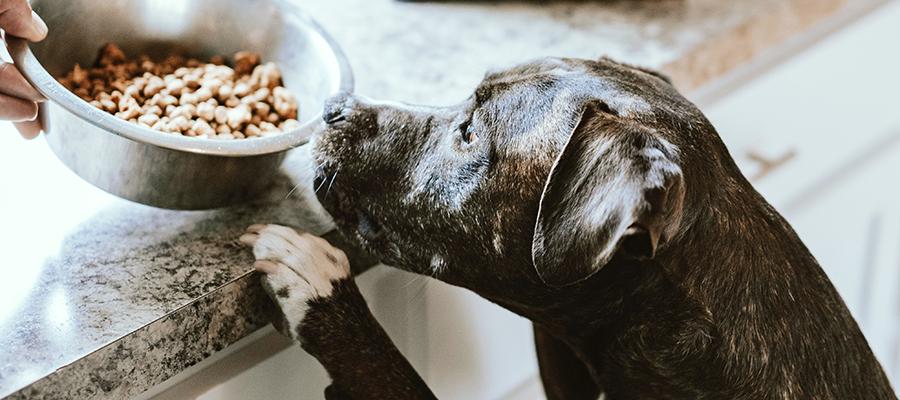 Market Information
Market Information
3+ MIN
10/09/2021
As pet owners prioritise the health and wellbeing of their pets, new opportunities abound in the pet food and treat market
As pets become a greater priority in households, pet owners are increasingly concerned with providing quality diets to their pets. Amongst pet food trends gaining momentum are natural preservation methods, digestive and immune health aids and plant-based ingredients. KerryDigest Full Scoop: Even before 'pandemic puppies' caused a surge in pet ownership, the pet food market was strong. In the wake of COVID-19 it has only grown, with Euromonitor predicting the global pet food market will reach US$110.2b in 2021, up from an annual valuation of US$102.1b in 2020, and is expected to exceed $150b by 2026. Although pet ownership is up, gains in pet spending have more to do with pet owners seeing their pets as people, which makes them more willing to spend more on food and treats. Pet owners are also placing greater importance on the quality and functionality of pet food, with many seeking out ingredients with proven benefits and others looking for novel taste experiences. Here we outline some of the ways we expect to see pet food grow across five categories that closely align with human food trends. Maintaining quality with recognisable ingredients A recent Kerry survey of U.S. dog and cat owners indicated that 90% of pet owners believe reading ingredient labels is important when making a food or treat purchase decision. Amongst these consumers, a quarter are willing to pay more for products that include recognisable ingredients. With ingredient labels beginning to look more like shopping lists, products such as Kerry EverWild™ are helping manufacturers maintain product freshness, quality and palatability over shelf life while using kitchen-friendly ingredients including dairy, celery and vinegar. Supporting pet digestive health Digestive health has also seen increased interest from pet owners, and there are several ingredients available to support pet digestive health. For example, probiotics are well known as a digestive health solution for pets, and BC30® is a highly stable spore-forming probiotic ingredient that can be formulated into pet food, treats and supplements. A growing body of scientific evidence suggests that pet microbiomes are more similar to the human microbiome than was once thought, which opens the door for brands to utilise human digestive health ingredients for pets as well. Catering to a growing interest in supplements COVID-19 reinvigorated the pet supplement category in 2020, with 116% more new pet supplement products introduced to the global pet market compared to 2019. This billion-dollar category is driven by pet owners seeking ways to meet their pets' physical and emotional wellbeing. Health claims for pets are similar to those used for humans, including immunity support, digestive health, joint health and brain health. With the growing appetite for a wide range of supplementary solutions in the pet health market, there is immense potential for manufacturers to tap in the future. Bringing exotic ingredients and formats to pets Many pet owners are seeking out new and unique ways to add variety to their pets' mealtimes. Just as consumer tastes change and new flavour profiles gain popularity in the mass consumer market, the pet food market is also ushering in new pet food flavour profiles. Innovative pet food trends that made a splash in 2020 and continue to perform well include gamey proteins such as venison, wild boar, rabbit and bison. We're also seeing a growing interest in products that include goatmilk as well as functional waters for pets. Product innovations like these serve curious pet owners looking to incorporate more unique and novel ingredients and protein sources into their pets' diets. Source: Kerry
4+ MIN
09/09/2021
ADM Significantly expands pet treat and supplement capabilities with planned acquisition of majority stake in PetDine, Pedigree Ovens, The Pound Bakery
September 8, 2021. CHICAGO - (BUSINESS WIRE) - ADM (NYSE: ADM), a global leader in human and animal nutrition, announced today that it has reached an agreement to acquire a 75% ownership stake in PetDine, Pedigree Ovens, The Pound Bakery and NutraDine (P4 Companies), premier providers of private label pet treats and supplements. The transaction values the four enterprises in their entirety at approximately $600 million, and ADM will acquire 75% of the equity, subject to customary adjustments. 'We're continuing to advance our growth strategy and transform our company with targeted investments that expand our capabilities in large, high-growth segments, including pet nutrition – a key focus of our growing animal nutrition business,' said Vince Macciocchi, President of ADM's Nutrition business. 'Annual global sales of pet food total $110 billion, forecast to grow to $140 billion by 2026 – with pet treats an even faster-growing category. We've grown to meet that demand, from the construction of new production facilities, to the additions of pet treat and food provider Crosswind and Neovia's global pet nutrition business, to the opening of our industry - leading Animal Nutrition Technology Center in Decatur. Now, we're taking the next step in our strategic journey with a majority investment in P4. We're excited by this agreement, which we expect to exceed our hurdle rates and financial return targets as we partner with an innovative, high-growth business with a great track record of working closely with customers around the globe to develop and produce best-in-class pet products.' With more than 300 employees, P4 Companies provides a complete range of highly customized pet treat and supplement products to more than 650 customers in 15 countries. Their offerings include baked treats, semi-moist treats, long goods, blends, unique proteins, soft chews, liquids and powders, many of which are developed to meet the demand for clean labels. P4 has delivered strong revenue and profit growth in recent years, and has invested in new product lines as well as expanded its production capacity. ADM will also acquire P4's 300,000+ square feet of state-of-the-art production and innovation facilities in Illinois and Colorado. In addition, the agreement includes a put/call option under which the parties could agree for ADM to purchase the remaining 25 percent at an agreed-upon market price in the coming years. 'As a group, our companies PetDine, Pedigree Ovens and The Pound Bakery, have become clear leaders in the pet supplement and treat space,' said Preston Munsch, CEO, PetDine. 'Through innovation, R&D and manufacturing expertise, we have become important strategic partners to brands around the world. Through this new and exciting partnership with ADM, we will be able to advance our customers' lead positions in the pet industry even further. Through their extensive list of ingredients combined with their Animal Nutrition Technology Center and worldwide resources, we are excited to merge our knowledge and expertise to continue to be innovative leaders in the pet industry.' 'ADM's global resources - from ingredient supply chain, transportation and their emerging pet nutrition platform - are what we were looking for in a partner', said Kurt Stricker, owner, Pedigree Ovens. 'We are excited to continue our strong growth path together'. 'Joining the ADM family gives us the ability to elevate and expand our product offerings to our customers and continue to support their ideas and growth,' said Lexie Berglund, President, The Pound Bakery. Like ADM, P4 has shown a strong commitment to sustainable practices; in 2020, they announced that their Harvard, Illinois, production facility was now powered with solar power, with the capacity to offset almost 1,500 tons of greenhouse gas emissions annually. 'Two years ago, ADM identified the humanization of pets – owners who want to provide their companion animals with the same kind of clean, simple, healthy products they eat themselves – as an important growth trend,' Macciocchi continued. 'This partnership positions ADM perfectly to continue to meet those needs. We're excited to partner with the great P4 team, and we look forward to collaborating with them to combine their best-in-class customized solutions with ADM's extensive pantry of ingredients, natural colors, and flavors; application development expertise; rapid prototyping and innovation capabilities; and global go-to-market footprint.' The proposed transaction is subject to regulatory approvals, and is expected to be completed in the coming weeks. Forward-Looking Statements Some of the above statements constitute forward-looking statements. ADM's filings with the SEC provide detailed information on such statements and risks, and should be consulted along with this release. To the extent permitted under applicable law, ADM assumes no obligation to update any forward-looking statements. About ADM At ADM, we unlock the power of nature to provide access to nutrition worldwide. With industry-advancing innovations, a complete portfolio of ingredients and solutions to meet any taste, and a commitment to sustainability, we give customers an edge in solving the nutritional challenges of today and tomorrow. We're a global leader in human and animal nutrition and the world's premier agricultural origination and processing company. Our breadth, depth, insights, facilities and logistical expertise give us unparalleled capabilities to meet needs for food, beverages, health and wellness, and more. From the seed of the idea to the outcome of the solution, we enrich the quality of life the world over. Learn more at. Author: Jackie Anderson ADM Media Relations Source: ADM
 Extrusion
Extrusion
7+ MIN
08/09/2021
Extrusion in pet food, process parameters to achieve the best results
From an engineering point of view, extrusion is a continuous molding and firing process that proceeds by the action of friction and shear forces on a superheated fluid, at high pressure, contained between a sleeve and a movable thread that expels it in a supported and controlled by an orifice of a determined size, generating at the exit of the equipment an expansion and molding process that is completed by a cutting system that provides the final desired size to the cooked mixture. Extrusion is a clean process, it uses very low amounts of water, it is very energy efficient and of very high productivity, it has an extra advantage that the mechanical development of the machinery is robust and durable. Conforming all this an accessible, well-known, durable and very efficient technology to produce large volumes of balanced feeds. There are extensive specialized articles on types of extrusion and how to assemble them in a plant in the best way, I refer them to those articles since it is not our purpose to treat the process of selection and installation of equipment but how to use it in the most appropriate way once we have it ready at the plant. From an operational point of view, extrusion must simultaneously comply with these attributes of the product and the production process Working flow in ton / h of dry matter Product safety Product dige1)stibility Appearance: shape and size Hardness and Palatability Work flow The work flow of an extruder is the great concern of plant and production managers. While it is true that the maximum flow rate of a given extruder is determined by its design, it is also true that to reach the maximum design flow it is necessary to control certain process parameters, the ones that have the most impact are: Die exit area: it is the number of holes in the die that determines the available exit area, if this area is very low the internal pressure rises and can produce refluxes that destabilize the extrusion, in extreme cases there are reverse flows that make the flour comes out through the extruder inlet and not through the die. It is recommended for pets to work in the range of 200mm2 / ton to 400mm2 / ton. The lowest values for products with high protein content, the highest heats for products with high starch content. Wear level of the extruder threads and their sleeves: to guarantee friction and shear it is necessary that the extruder does not present wear on its parts in contact with the product. In addition to reducing energy transfer, wear severely reduces the carrying capacity of the thread, generating backflow and instability. It is recommended that the clearance between the thread and the sleeve does not exceed the range of 3mm to 6mm depending on the type of extruder and its configuration. A more practical approach indicates that the extruder tip should be replaced every 3 to 4 months if the machine is used at maximum flow for about 20 hours a day. Product safety The extrusion process handles extreme pressure and temperature conditions, so the product that comes out of the extruder is usually considered sterile. In order to adequately monitor the pressure and temperature conditions inside the extruder barrel, very robust and expensive probes are needed, which in any case have a large number of failures. Therefore, it is recommended to monitor the temperature of the conditioner. There is scientific evidence that above 71 ° C in the presence of a minimum of 18% humidity, pathogenic bacteria are completely eliminated in the conditioner. This temperature is much simpler to measure. A key point in this parameter is to eliminate cross contamination, both by dry flour that has not yet passed through the conditioner and by flour residues that are usually projected from the conditioner. For this problem, it is recommended to work at a steam pressure not exceeding 1.5 BAR. On the other hand, all possible leaks of powders in the system that are easily sucked by the pneumatic transport system at the exit of the extruder must be sealed, which has the appropriate conditions to develop microbiological contamination and re-contaminate the product. Product digestibility Although the digestibility of the product is largely influenced by the digestibility of the protein sources used in the formulation, it is true that the digestibility of carbohydrates is regulated almost exclusively by the extrusion process. Native (raw) starch is not usable by the digestive system of dogs and cats, but gelatinized starch is, a cooking process that is exclusively handled by the extruder. An indirect measure of the digestibility of the product is the degree of gelatinization of the starch at the exit of the extrusion system, which should not be less than 85%. Another parameter that impacts on digestibility, due to a question of accessibility, is the degree of expansion of the product, which is also controlled in the extruder, if the product is very compact, it is difficult to chew and digest, reducing not only digestibility. chemical but also biological. To guarantee an adequate degree of expansion, it is advisable to work on the exit area, conditioning temperature and humidity level in the extruder / conditioner and a quality measure, which is the density of the product. Die exit area, not to exceed 400 mm2 / ton in economical products, reduce as protein and fat content increases to increase expansion. Conditioning temperature, it is recommended to work at a minimum of 93 ° C to guarantee the rapid gelatinization of the starch. % humidity in the conditioner: the total level of humidity in the conditioner must be at least 24% to allow an adequate expansion of the product. Density: all the above parameters can be controlled in a simple way with a single measurement in the extruder that is the density of the product at the exit of the equipment, this parameter is suggested not to exceed 400 g / L at this point in the process to guarantee adequate digestibility of the product. Appearance: shape, size and color Although they are parameters that are defined during the food development process, they are operationally controlled in the extrusion system. The shape is fundamentally related to the wear of the extrusion dies, if they are made of a high hardness material (55 to 60 Rockwell C) they tend to last approximately 5000 ton of production before they wear out, softer materials wear out much more quickly. The size is also influenced by the wear of the die, but fundamentally it is controlled by the cutting speed of the extrusion system. The higher the cutting speed, the smaller the product size. An additional parameter that can influence the size of the product is the speed of rotation of the thread, in extruders with a variable frequency drive that allows handling different speeds, it is verified that increasing the speed of the thread increases the expansion and therefore the size. Hardness and Palatability The hardness of the product is closely related to its texture, and this property has a direct and very important impact on palatability. The texture is the internal structure of the croquettes, their spongy shape product of the expansion. The arrangement and size of the expansion bubbles determine the type of hardness (texture) of the food, which can be measured with a texturometer, or empirically by pressing the croquettes. It is well understood that hard products are less palatable, mainly for dogs. In the case of cats, they prefer crunchy products, but not hard, all these parameters can be conveniently measured with a texturometer. A microscopic analysis of the interior of the kibbles is also recommended to verify the size and spatial arrangement of the expansion cells (bubbles). It is not easy to define a group of parameters to suggest for these measurements, and the limits must be constructed for each particular case. If it can be said that the densest products tend to be harder and have a very closed texture that is not suitable for chewing and the expression of odors and flavors that reduces the palatability of the product. Another impact of the closed texture on palatability is that very dense croquettes with a very compact cell structure have problems absorbing surface liquids, which is why they have a negative impact on the process of applying fats and flavorings, reducing the palatant effect of these two. ingredients. One of the parameters that has the greatest impact on the texture of the product is the configuration of the extrusion thread, since this configuration governs the amount of mechanical energy that is transferred to the product during cooking. Mechanical high-energy settings are best suited for low-starch, high-fat products, and vice versa. It is complex to be able to make cheap and premium products with the same thread configuration, even more so when fresh meat is included in the premium products. As can be seen from this short list of parameters, extrusion has a huge impact on quality, sensory characteristics, and industrial performance. Beyond the extrusion technology available, properly calibrating both the mechanical and operational parts of the extruder gives us the ability to significantly modify the characteristics of the product and the general result of the operation. Keeping the parts free of wear, calibrating the temperature sensors and flow meters, regulating the humidity of the product, controlling the thread configuration properly, have proven to be the parameters that most impact on achieving adequate quality and stable and efficient operation. Source: All Pet Food
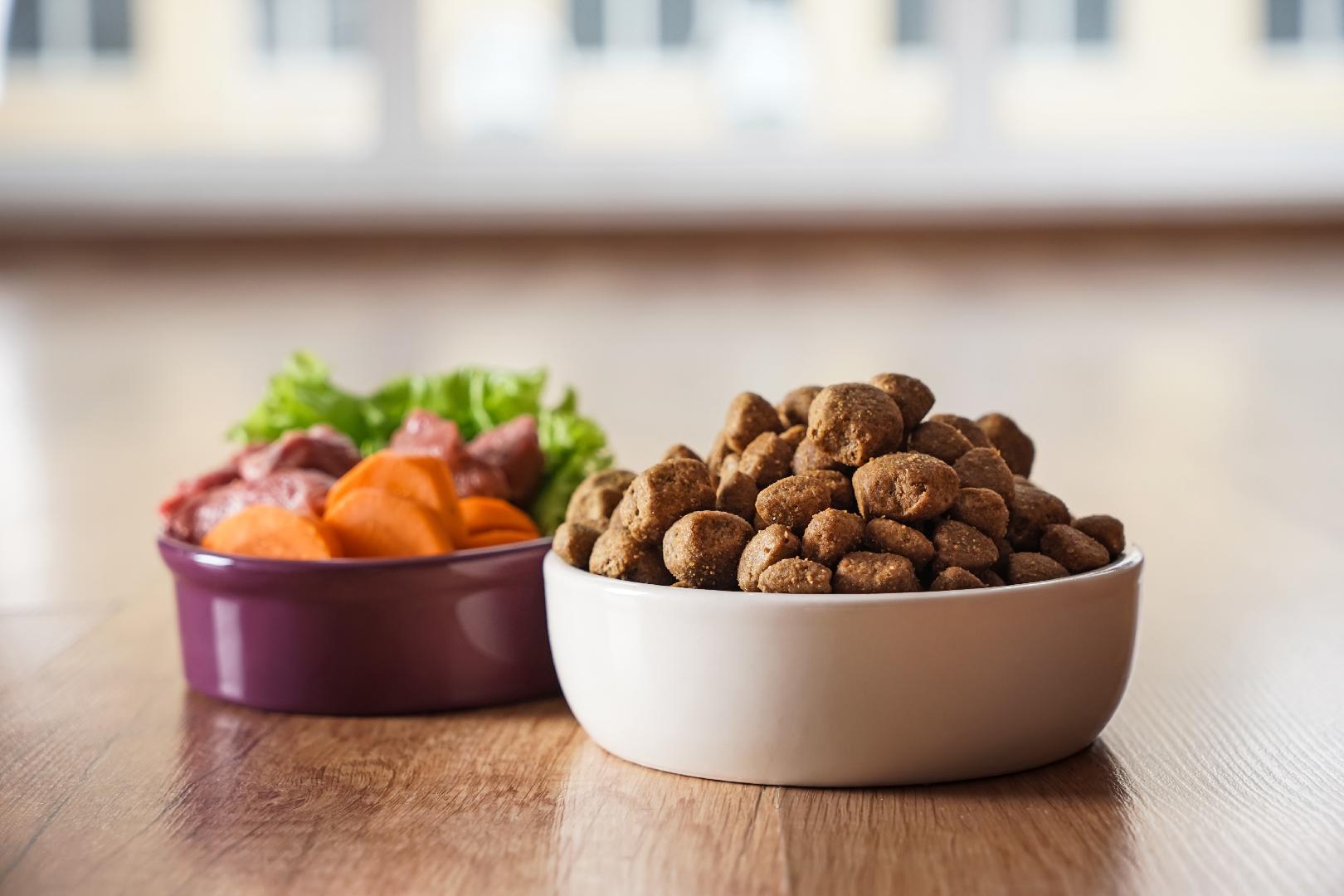 Trends
Trends
6+ MIN
06/09/2021
Por Armando Enriquez de la Fuente Blanquet
What is "Premiumization" for a Pet Parent?
The Pet Care market grows year after year, with Pet Food being the one that contributes the most to this market, and manufacturers are always looking to capture the attention of the Pet Owner. When we consult the different agencies that study trends to meet consumer needs, we see Nielsen, for example, telling us what the consumer does not like (GMO, hormones, artificial preservatives for example); o Pet Food Industry, which publishes what the consumer is looking for (functional ingredients, protein content, superfoods for example); or Euromonitor, which highlights the attributes that a food must contain (health and well-being, sustainable, sources of protein for example). How does all this can be linked to premiumization? I would like first in this article to highlight the role that a Pet plays in our lives and in society. For many centuries, Cats and Dogs have been associated with humans as work, guard, and companion animals. Human beings in return have fed them and many times have even shared their food with them, but today the feeding of Dogs and Cats has evolved rapidly and has reached industrial feeding, which contains the balance adequate nutrients a Pet needs. Currently Pets have taken a more important role in the life of human beings and are considered a member of the family. And so we live the beginning of the "humanization" of Pets where humans went from being pet owners to being "parents" of Pets, a significant term because our "furry" child requires greater care and well-being. As Pet Owners become more likely to treat their Pets as members of the family, they tend to pay more attention to their Pet's food, seeking to make it healthy; not only feed it to meet its requirements, but something else is sought, it seeks to nourish them correctly, since good nutrition guarantees good health. Here we begin to see how premiumization begins: understanding that the pet parent seeks the best to feed his furry child. Going further into the topic, the Pet Food market is estimated to be worth more than $ 140 billion. This market has evolved over time to offer Pet Parents different types of products, always seeking to meet the nutritional needs of the Dog or Cat. We have dry, wet or semi-humid foods, in addition to prizes or snacks of all kinds, and other types of diets that, without detracting from them, still occupy a very small space in the market. But there is nothing else left in the types of presentations, as we have already been talking about. In the market there is a wide range of products that have been categorized within a segmentation that in practical terms is divided into three: economic (or standard) foods, medium-price (or premium) foods, and premium (or super-premium) foods. ). This terminology can make us think that it is a segmentation linked to the monetary value of the product, and in some way it is, but it also determines the quality of the food, because a premium food is made with ingredients of greater digestibility and greater nutritional value for the pet. But if we reflect a bit, a product that contains high-quality ingredients should cost more than one with lower-quality ingredients. So the next question would be, if a Pet Parent, as we have been seeing, is convinced to give a Pet Food that guarantees a better quality of life to his Pet, will he be willing to pay more for that food? The answer is yes. We can see this in the evolution of the prices per kg of food for Dogs or Cats in the last 9 years, where the annual growth rate has been 3.3% and, in addition, the forecast for the next 5 years shows a trend still higher to reach a variation of + 4.1%, according to Euromonitor, 2021. Regardless of the segment, the Pet Food must meet the nutritional needs that the Pet needs, according to guidelines such as AAFCO, NRC or FEDIAF. However, a premium food refers to a particularity that makes it stand out for its extreme quality and for being aimed at a particular group, for example, therapeutic or human-grade foods. So, what is premium quality? There are multiple factors, ranging from nutritional levels (protein content, fat, etc.), specification of ingredients (meat as protein of animal origin), attributes that will give the pet a better quality of life (longevity, vitality, etc. .) or innovations seeking to satisfy the well-being of the dog or cat (dehydrated, 'grain free', etc.). What is a pet parent looking for? The benefits observed, attributable to a food, are related to the feelings of the Pet Owner towards his furry child, which can range from the importance of a modern container to maintain the nutritional value (smaller size, sustainable, etc.), which the ingredients are of high quality (meat and not by-products), that the pet eats it with pleasure (high palatability), that the shape and quality of the kibbles is superior and can be seen with the naked eye (size and shape of the kibble), that the product connects with the pet owner (breed, age, health benefits, simple and clear information, etc.), that the product meets a need for my pet (geriatric, active dogs, etc.), that is a superior formula (protein level, with probiotics, with vitamins and minerals, etc.), among others. All of the above speaks of a superior product, or premium, in the eyes of the Pet Parent. We must consider within the premiumization the demographic phenomenon where Generation X begins to decline and the Millennial Generation, and not too far away also Generation Z, begin to direct market trends. The younger generations have only grown up knowing pets as equal members of the family, eating a diet designed for the Dog or Cat. New Pet Owners are taking a holistic view of wellness and health that prioritizes simplicity and transparency. Consumers are bargaining for the highest quality foods when feeding their pets. Healthy food is seen as an investment in a pet's longevity, with premium nutrition. But these generations of pet owners are also considering value for money when operating within pet care. Many are looking to find premium features at more affordable prices. That said, premiumization becomes complex and is not simply changing the category of food that is given to the Pet. If my Dog or Cat eats an inexpensive food, I'd better change it to a more expensive food. But the requirement of the current pet parent is that the additional cost that he is paying for his food must be well founded with science, evidence, testimonials, etc. According to Mintel (2021), Pet Food manufacturers are in a constant process of innovation to offer Pet Parents this premium product, but beware, the values sought by the pet owner may vary from region to region due to the degree of humanization in which this market is found. In the USA the market seeks more functional attributes, to ensure maintaining the health and happiness of your pets in a simple communication with the use of "clean label". In Asia, on the other hand, the attribute of quality and safety are aimed at reducing the risks of diseases, perhaps as a consequence of a pandemic issue. In Europe everything related to sustainability and natural products (free of artificial additives) takes importance. Finally, in Latin America, the pet owner looks for the so-called 'superfoods', which is based heavily on fortification to favor specific health aspects. So, if we recapitulate a premiumized product, it contains a higher level of nutrients, it is made with better quality ingredients and it is also fortified with additives such as vitamins and minerals, omegas, chondroprotectors, natural antioxidants, etc. Remember that fortification must follow the same quality guidelines, for example, if we focus on the fortification of trace minerals, we know that the chemical characteristics associated with different sources of Cu, Zn and Mn such as sulfate, hydroxychloride, or organic chelate can affect the interaction between metals and other nutrients present within the gastrointestinal tract of the pet. A premium product will look for the best sources of raw materials to give the confidence that the pet owner looks for in a premium food. In conclusion, a Pet Parent does constantly seek to premiumize the nutrition of his furry child. This premiumization consists of a food with a higher protein content as an initial stage, with a protein source that guarantees the best availability of nutrients. Premiumization also consists of seeking health benefits for the dog or cat, attributable to fortification. The millennial or generation Z pet owner, in addition to ensuring health and well-being, demands scientific evidence. Premiumization, in addition to the nutritional benefit of the Dog or Cat, must satisfy some needs of the parent such as sustainability and the manufacturer's social commitment. And finally, the pet parent will be willing to pay more, but only just enough. Source: All Pet Food
 Extrusion
Extrusion
2+ MIN
03/09/2021
GEA launches its new xTru Twin 140 extruder completing its range of highcapacity output equipment
The new top-of-the-range machine is equipped with an advanced profile; powered screws provide users up to 40 percent increased capacity with the same efficiency, quality and footprint as previous models. Additionally, this high-capacity technology can be applied to the other models of the GEA xTru Twin extruders too – models 70/92/112 – and retrofitted to older machines to increase their capacity without changing the floorplan of the factory.
The GEA xTru Twin extruders offer the flexibility to produce a wide range of products including: cereal-based snack pellets die-cut, 2D, 3D, multilayers, square shape, punched and direct expanded; breakfast cereals; dry pet food; and any other extruded food product. The latest xTru Twin 140 has a production capacity of over 3 tons of pellets and 10 tons of pet food kibbles an hour.
More capacity but same footprint ... same machine!
To achieve the additional capacity GEA engineers have used their experience and know-how to increase the crosssectional area, rotation speed and pitch of the screws on the new machines while maintaining the extruder footprint and screw length. This also allows customers to upgrade existing machines without buying a new one or changing the plant layout.
Increased quality, hygiene and safety
Other key features of the GEA xTru Twin range include: A high-speed premixer for perfectly hydrating flour; a large, curved mixing vessel that facilitates good water absorption and adhering to the requisite hygiene standards; a vertical forced feeding screw to control the dough's movement into the cooking screw; a powerful, variable speed motor with a safety clutch; a high-torque, double cascade gearbox that ensures excellent power reserves and safety. With its co-rotating, fully intermeshing twin screws, a modular barrel assists in properly cooking cerealbased dough.
Driven by customer demand
GEA embarked on the process of developing the new technology in response to customers' requests and the market's need for a single, high-capacity machine capable of producing a wide range of innovative food shapes.
Thanks to this new technology's flexibility, customers can develop new products and get them to market quicklyand profitably.
The upgraded GEA xTru Twin 92 high-capacity extruder offer users up to 40 percent higher capacity with the same efficiency, quality and footprint.
The new xTru Twin 140 extruder completes GEA's high-performance extruder range.
Aditional information
GEA Snack Pellet Processing Brochure
GEA pet Food Processing Brochure
Source: Gea Group
 Trends
Trends
2+ MIN
02/09/2021
Novel insect protein approved for the US pet food market
Insects are an interesting alternative to traditional animal proteins. Alternatives to traditional ingredients of animal origin need to be sustainable, pure, of high quality, and cost-effective to have a place in tomorrow's pet food industry. Black soldier fly (hermetia illucens) larvae meet these criteria. Although it is of animal origin, insect protein has a much lower ecological impact than traditional animal protein. The only insect species currently commercially viable for pet food applications is black soldier fly (larvae and meal). Increasing demand for proteins IQI Trusted Petfood Ingredients believes that the production of insect protein is important to keep up with increasing worldwide demand. Together with its supplier Entobel, IQI offers a unique portfolio of insect fat, dried proteins and frozen insects from black soldier fly (BSF) production for use in pet food. The insects are processed into different products, including good-quality and sustainable insect meal and insect oil. Having supplied the European market for several years, IQI will now introduce BSF larvae and meal onto the US market. Future demand for insect protein Earlier this year, IQI provided input to a report by the Dutch Rabobank on trends in the pet food industry and in particular those relating to the increasing future demand for insect protein. According to Rabobank, because of the sustainability aspects and functional benefits, there is great potential to develop specialized ingredients and products from insect protein for a variety of applications. IQI supports the report's main conclusion that demand for insect protein, mainly as an animal feed and pet food ingredient, could reach half a million metric tons by 2030, compared to today's market of approximately 10,000 metric tons. Pet food is predicted to become the second largest category of insect protein production by 2030, surpassed only by aquaculture. The approval of BSF larvae and BSF meal for the US pet food market is an important step in this direction. AAFCO approval of BSF ingredients for use in cat food is expected in 2022. By: IQI Trusted Petfood Ingredients
 Extrusion
Extrusion
5+ MIN
01/09/2021
Por Luciana Chippano
Pet Food - What are the real effects of extrusion?
In this article we analyze what are the effects of extrusion on the different nutrients with more presence in food to deepen our knowledge about this technique. We have used the extrusion method in the pet food industry for almost 70 years. Almost 95% of the production is carried out in this way. Even so, the production process that it entails requires certain processes that must be correctly synchronized to achieve consistency and quality in each batch produced. The truth is that, as it is a process that involves heat treatment, extrusion can have both beneficial and detrimental effects, if done in the wrong way, on the final product. Some of the effects that are sought through this process are the increase in palatability and the elimination of undesirable nutritionally active substances and the improvement of digestibility, among others. On the other hand, some of the most likely negative effects are the reduction of the quality of the proteins due to, for example, the Maillard reaction, a poorer palatability and the loss of thermolabile vitamins. The reason this method is so widely used is because of its versatility in blending, detoxifying, sterilizing, and texturing a wide variety of foods and ingredients used in food formulas. As we know, the combination of humidity, pressure, time, temperature and mechanical shear is the key to the process. So let's analyze the effects of the extrusion process on Pet Food. Effects of extrusion on starch Pet food formulas typically contain up to 50% starch, which is derived primarily from grains. The starch found in cereal grains is organized in concentric layers of semi-crystalline or amorphous regions in the endosperm. Extrusion cooking can cause the swelling and breakage of the cereal granules, the modification of the crystalline spectra, the increase of the solubility in cold water, and the reduction of the viscosity of the starch and the partial or complete release of amylose. and amylopectin. When the extrusion process is carried out with a low moisture content, the starch granules can be partially transformed by the application of heat. This results in loss of crystal structure and granular shear, leading to the formation of a homogeneous phase called starch melting or gelatinization. This gelatinization affects the viscosity of the mixture and the food and, consequently, the physical and chemical characteristics of the extrudates. High screw speed (400 rpm) during pet food production has been shown to reduce viscosity. During the extrusion of starches, factors such as temperature, the level of humidity before extrusion, the content of amylose and lipids, can lead to structural modifications of the starch granules. However, these changes may differ between cereal and potato starch. Gelatinization has been shown to improve faeces and tapioca starch digestibility, but no effect on the digestibility of wheat starch, for example, has been seen. Other studies have shown that retrograde starch (AR3) in certain foods is easily fermented in the large intestine, producing short-chain fatty acids; but not all retrograde starches are equally fermentable, and in these cases an improvement in intestinal health is seen, a reduction in transit time and an increase in the weight of animal feces. Effects of extrusion on lipids The nutritional value of lipids from sources such as tallow, poultry fat, vegetable oil, and marine oil can be affected during extrusion as a result of hydrogenation, isomerization, polymerization, and lipid oxidation processes. The rate of oxidation is affected by many factors, such as the type of fat and its content, humidity and the degree of expansion. Fat unsaturation increases the challenge of proper preservation. In addition, some trace elements such as iron, and the use of biological antioxidants can play an important role in post-extrusion oxidation. In various studies, no effect on digestibility has been seen in cases where lipid complexes were formed during extrusion. For their part, inactivated lipase and lipoxidase, when present in food, result in less fatty acid oxidation. Effects of extrusion on protein The protein component of pet food usually constitutes between 25 and 70% of the dry matter. The effects of extrusion on the protein component can be beneficial or detrimental to the nutritional characteristics of foods. As for the positive effects, mild denaturation of proteins can make them more susceptible to enzymes and thus improve their digestibility. Undesirable effects of heat treatment include the destruction and racemisation of amino acids, the destruction of bonds between peptides and extra-peptides, and a number of other chemicals. Various studies found that the digestibility of crude protein in dog and cat food is not affected by the extrusion process. In fact, if done correctly, extrusion improves the degree of inactivation of protease inhibitors in wheat flour and thus increases the digestibility of legume proteins. In addition, the effect of processing various plant and animal protein sources on digestibility in dogs has been studied, and it was stated that diets with extruded feed, even with different vegetables as protein sources, provided adequate levels of protein and amino acids. digestible. Effects of extrusion on vitamins Many vitamins are sensitive to chemical treatments. Its stability depends on the chemical structure of each vitamin in question and can be reduced or modified by exposure to heat, light, oxygen, moisture and minerals. Vitamins differ greatly in structure and chemical composition, so their stability during extrusion is variable. However, the known extrusion effects are more negative than in other cases, mainly for vitamins of group B, A and E. In pet foods, extrusion cooking has been shown to be detrimental to vitamin concentration, with oxidation being the main degradation mechanism. The temperature of the extrusion process can be a decisive factor for the retention of vitamins, since it has been found that in an extrusion with temperatures between 130-135 ° it leads to greater losses than with temperatures of approximately 107 °. Conclusion Extrusion is a process extensively known by the industry, but still complex, which involves interrelationships between the parameters of the process and the product that affect the reactivity of nutrients and, consequently, the quality of the final food. The most important process variables are temperature, residence time and humidity, and in this article we have discussed the research done on the most important components of pet food. As a manufacturer, you now have this information available to improve your extrusion processes, avoid harmful effects and provide pets with a product of better nutritional quality and palatability. By: All Pet Food
 Manufacturing Process
Manufacturing Process
1+ MIN
31/08/2021
Automation technology: a new division arises in Ferraz!
The new division offers complete engineering, updated with the market, where the proposed services are previously studied and reviewed, to always offer the best for the client to obtain productivity, quality and traceability. Through qualified professionals, AutoFer is able to develop services such as panel assembly, creation of supervisors, development of command and control positions, independent automation and industrial connectivity, all within the company itself. Online factory management AutoFer develops software that manages total control of the factory, accelerating access to production data directly through the cell phone; online, in real time, customized to the needs of each client. Source: Ferraz
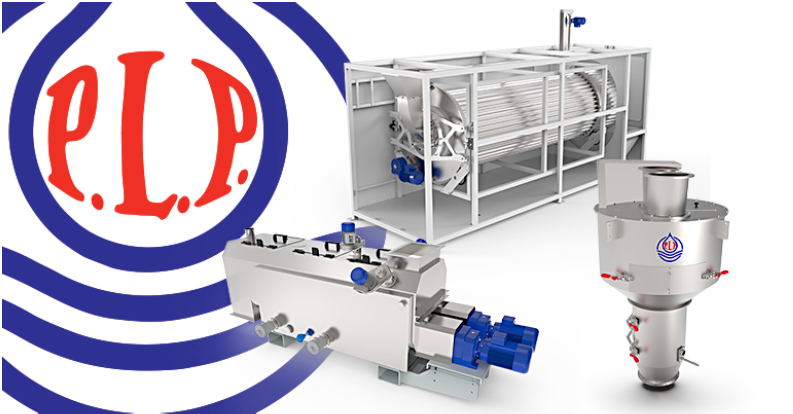 Dosing
Dosing
2+ MIN
30/08/2021
PLP Systems pilot plant for continuous coating
There was a key change once a continuous coating test plant was developed in our company that can reproduce the full capacity of the industry demands, to minimize the difference in results between a laboratory test compared to actual production. This internal continuous coating test plant is used for: Technological innovation of PLP and know-how to compete in the market with the application of pellet coating. Customers looking for creative applications are available to perform testing and developing new products for your pet food by coating them with powders or flakes such as spices, vegetables, cheese, flavors, nutritional agents, etc. Too to coat semi-moist or baked pet food. Customers who want to test PLP technology before purchasing the system can perform the test of the complete coating line. The pilot plant can be adapted for different products with a production capacity from 300 kg / h to 15 ton / h, managing different densities. It is equipped with a precise gravimetric continuous dosing of the main product (croquettes) carried out by means of a weighing tape or a weighing thread. Dosing of liquids by pump and flow meter and dosing of powders by weight loss feeders. All controlled by the automation and proportional dosing adjusted by frequency control drives. The test plant can be integrated with 3 different PLP coating technologies: DRUM ROTARY; COVER WITH DOUBLE AXLE BLADES; MASS SPIN COATER. ROTARY DRUM The latest development over the more traditional rotary drum, this machine is specially recommended for semi-wet products, small extruded or granulated pellets and lower production capacity. The special corrugated shape of the drum increases the rotation of the product, at the same time protects it from damage and reduces waste inside the machine, making it a perfect machine to be used in food application or with special kibbles for pet food. CONTINUOUS COVER WITH DOUBLE AXLE PADDLES It is our most widely used machine for standard pet food production and has received the majority of R&D improvements during the last years. There are different models that can cover all required production ranges with high liquid inclusion rates or fats. The focus of the machine is the retention time and this is achieved by regulations of speed independent of the axles, internal dampers and automatic check valve in the output of the product. The retention time in standard pet food production it can reach up to 200 seconds. MASS SPIN COATER Compact continuous cover used to add micro liquids up to 1%. The MSC integrates a continuous precision weighing technology, based on Coriolis forces. Thanks to a nozzle special is able to obtain a perfect homogeneity even when the inclusion rates are less than 0.1%. Source: PLP Systems
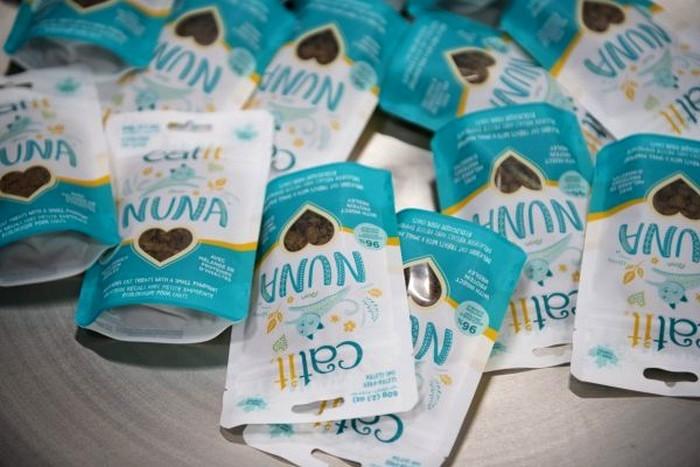 Trends
Trends
5+ MIN
27/08/2021
Kitty, want an insect?- Nuna is the first cat food in North America to be made with insect protein
However, as president and CEO of the Hagen Group, the world's largest private multinational maker and distributor of pet products, he is electrified by the market potential of the novel product. 'It's a small niche, but sales are building each month,' said Hagen, son of company founder and Canadian pet industry pioneer Rolf Hagen. Availability The two-flavour Nuna line is part of the Hagen Group's Catit brand. Made from a mix of insect, yeast and meat protein - chicken or fish - the dry kibble went on sale both online and at retail locations across Canada in January, 2021. It is also available in the U.S., but only via the Catit.com website. The Nuna line is made from a mix of insect, yeast and meat protein. Currently it is available in two flavours. The line is also now being launched through Hagen's extensive network of pet retail companies in Europe and the United Kingdom. A container was also shipped to Korea in April, the start of what Hagen hopes will be a lucrative foray into the Asian market, where Catit is already a top brand, thanks to its many lines of quality cat products including wet food, interactive toys, drinking fountains and furniture. 'Our partners in China are very excited,' said Hagen. 'The cat market in China is looking for high-end products like this and we're already one of the top brands there, as well as in Japan. They believe there is a niche for a very educated and quality product like ours.' Whole black soldier fly larvae are run through a mechanical press to extract oil. Floured larvae Developed over the past few years at Hagen's 270,000 - sf facility in the west - end Montreal neighbourhood of Saint-Laurent, the Nuna line uses the floured larvae of black soldier flies, the same animal protein alternative being used by Nestlé's Purina to make their new Beyond Protein dry dog food line in Europe. Catit also uses the same ingredient to make Bug Bites fish food under its Fluval brand. According to Hagen food scientist Grégoire Guot, the project's goal was to use the nutrient-rich larvae as an eco-friendly substitute for the more resource-intensive meat from farm-raised animals that are found in traditional cat food. 'Insects are still considered animals so making a vegan food was never the plan, but cats can't survive on insects alone either,' said Guot. All felines, he noted, from the world's 500 million house cats to the remaining 3900 tigers in the wild, are obligate carnivores, meaning they rely on meat to survive because their bodies can't digest plants properly. Testing recipes Guot said the challenge facing Hagen was to find a balanced formula that was both nutritious and tasty to cats. 'People think cats are finicky but they're not that difficult,' he said. 'They just like to eat what they know, and there is a genetic aspect to it: cats tend to love what their mothers ate.' Guot said it took a year of taste testing by different panel of cats (both internally using pets of Hagen employees and externally employing professional cat tasting panels in Ontario) to find the right blend of protein and flavours for the new Nuna line. 'We tested a few different recipes,' Guot said about the panels, which typically involve 40 cats that are kept for two days in a common area with free access to automatic feeders. The amounts of food they eat and their reactions and behaviours are recorded for statistical analysis to help measure acceptability, palatability and digestibility. Once the two Nuna recipes were approved, focus switched to production. Unlike airtight wet cat food lines like Catit's Divine Shreds and Fish or Chicken Dinner, which are cooked in sealed cans or pouches to protect them from oxidation and contaminants, dry food kibble like Catit's Gold Fern, which is 95 per cent meat and green-lipped mussel, need to be created out of ingredients that can provide 12 to 18 months of shelf life. Processing Supplied by various American and Canadian insect producers, including Maple Ridge, B.C.'s Enterra Feed and some small Quebec firms, Hagen began processing whole black soldier fly larvae by first running them through a mechanical press to extract the oil, which is then treated to remove impurities and stabilized using a natural antioxidant blend. 'The larvae are essentially peanuts,' said Beno Choquette, an agronomist who has worked 23 years for Hagen, where he is in-charge of laboratory work and regulatory affairs. 'They are high in calcium and protein and there are trace vitamins and minerals and some amino acids. However, we need to supplement it with protein from yeast (an ingredient used for decades in the pet food industry) and meat protein (chicken or fish) to complement the nutrition profile.' After going through a Hammer mill, the insect meal and additives are reduced to a flour mix that is conveyed to a computer-controlled, twin-screw extruder and cooked at low temperatures (to prevent nutrient degradation) to form dry, pellet-size kibbles. After extrusion, the preservative-free kibbles are sent to a single pass dryer (to add shelf life), sifted and enrobed in flavours. Once cooled, they are bagged in recyclable packaging - a first for Hagen o- n one of the company's eight fully and semi-automatic packaging lines. Niche product Though it is only a small addition to the Hagen Group's 25-strong list of brand name pet products for aquatic species, birds, cats, dogs, reptiles and small animals, Rolf Hagen Jr. says the sustainability mindset behind the innovative Nuna line is now driving R&D in a company that was founded as a small seed brokerage in Montreal in 1955 by his late father, a young German immigrant who left his war-ravaged homeland for a new life in Canada. 'There are many benefits from using black soldier fly larvae, but they cost eight times more than soybean so they will remain a premium category product in terms of protein pricing,' said Hagen. The Hagen Group, he added, 'is not a prototypical pet food. We have an eclectic array of equipment (and) use a batch system of production that allows us to create targeted speciality runs.' Still, Hagen is confident the insect pet food market will continue to grow, and he is ready to ramp up the Nuna line to large-scale production if and when demand warrants it. 'We birthed it (and) if it is successful commercially the goal would be to produce it in a traditional pet food factory,' he said. 'We have partnerships with pet food makers that would make it happen.' Source: Food in Canadá
 Trends
Trends
4+ MIN
25/08/2021
Por Luciana Chippano
Let's talk about the current situation: How is the pet food industry in Latin America?
Livestock production is considered a social, economic and cultural strategy activity throughout the region, since it preserves the well-being of communities while simultaneously providing security for daily subsistence, ecosystem care, wildlife conservation and satisfaction of cultural traditions and values. In Latin America, including the Caribbean region, livestock is considered essential for the food security of the population, both human and animal. In fact, more than one billion (1,000,000,000) people around the world depend on this sector. Latin America, due to its climatic conditions and soil fertility, becomes an ideal place for the development of this sector. During the last few years, livestock production in the region has grown even above the expected average growth. However, the high costs of animal feed and the inefficient use of available food resources, the risk of transboundary pests and diseases and the negative impact of climate change negatively affect the productivity of the sector. Everything that happens in livestock production impacts the pet food industry, since they are closely related in terms of the need for beef and poultry meat by-products for the production of pet food. For example, small producers of livestock activities each day represent a larger portion of the total producers in the region, and it is they who provide our industry with organic products and free animals. Where are we going: customization The trend that is going strong, even in underdeveloped countries like those of Latin America, is, without a doubt, to personalize everything and humanize pets as much as possible. The evolution precisely of the young generations (millennial and Z) towards a 'society of mime' is a phenomenon that has managed to create new massive economies. The highest pet ownership worldwide is in Latin America: 80% of the population in both Argentina and Mexico have at least one pet; Brazil follows suit with 75%. Behind come Russia (73%) and the United States (70%). In addition, Brazil is today one of the top 5 markets worldwide for pet care products. In crises, an opportunity Beyond the economic crisis and the stagnation of economic growth in Latin America, the pet market in the region has experienced exponential growth. Precisely, it is not thanks to economic problems, but 'because of' since, as has happened with the pandemic, people choose to enjoy more of their homes and the comfort of home. And what better than an animal company for those moments? Until a few years ago, the "pampering" of having a pet (not to mention giving the same or more to a human being) was considered upper-middle class. Today the new generations even restrict tastes for themselves in order to have a pet and have it in the best conditions. The region has a combination of factors that lead to the pet ownership rates it presents: Massive inequality in terms of income levels and quality of life. High rates of urbanization in cities. Economic instability and high rates of inflation in almost all Latin American countries. Saturated educational systems. Access to housing limited to a very small percentage of the population. As a result, we have a young and adult middle class with a considerable part of their income exclusively dedicated to renting someone else's home, so they consider it practically impossible to achieve a quality of life or income that allows them to have children. Thus, instead of goods, they seek to invest in experiences, including: Pets. And how do the prices come? Corn is one of the main ingredients for pet food in Latin America. As the global economy recovers from the crises caused by the coronavirus, demand for basic products will increase. Such is the case in China, India and the US, so some pressure is already being exerted on international corn prices. In fact, in the last 6 months, corn prices have risen steadily, accumulating a rise of 64.3%. Since corn is a key ingredient in a large amount of pet foods in Latin America, so its rising price is likely to affect the price of various foods. Summary As the economy recovers in 2021 and beyond, the prices of many commodities are likely to increase, so pet food producers will have to pass these increases on to end consumers. Likewise, there is still much to explore in this new vein that is gaining more ground every day: the decision to add pets to the family to go through socioeconomic crises in a more pleasant way, whether caused by the coronavirus or by the general situation in the region, which offers us the opportunity to not only increase the quality of what we offer, but also to expand our range of possibilities. By: All Pet Food
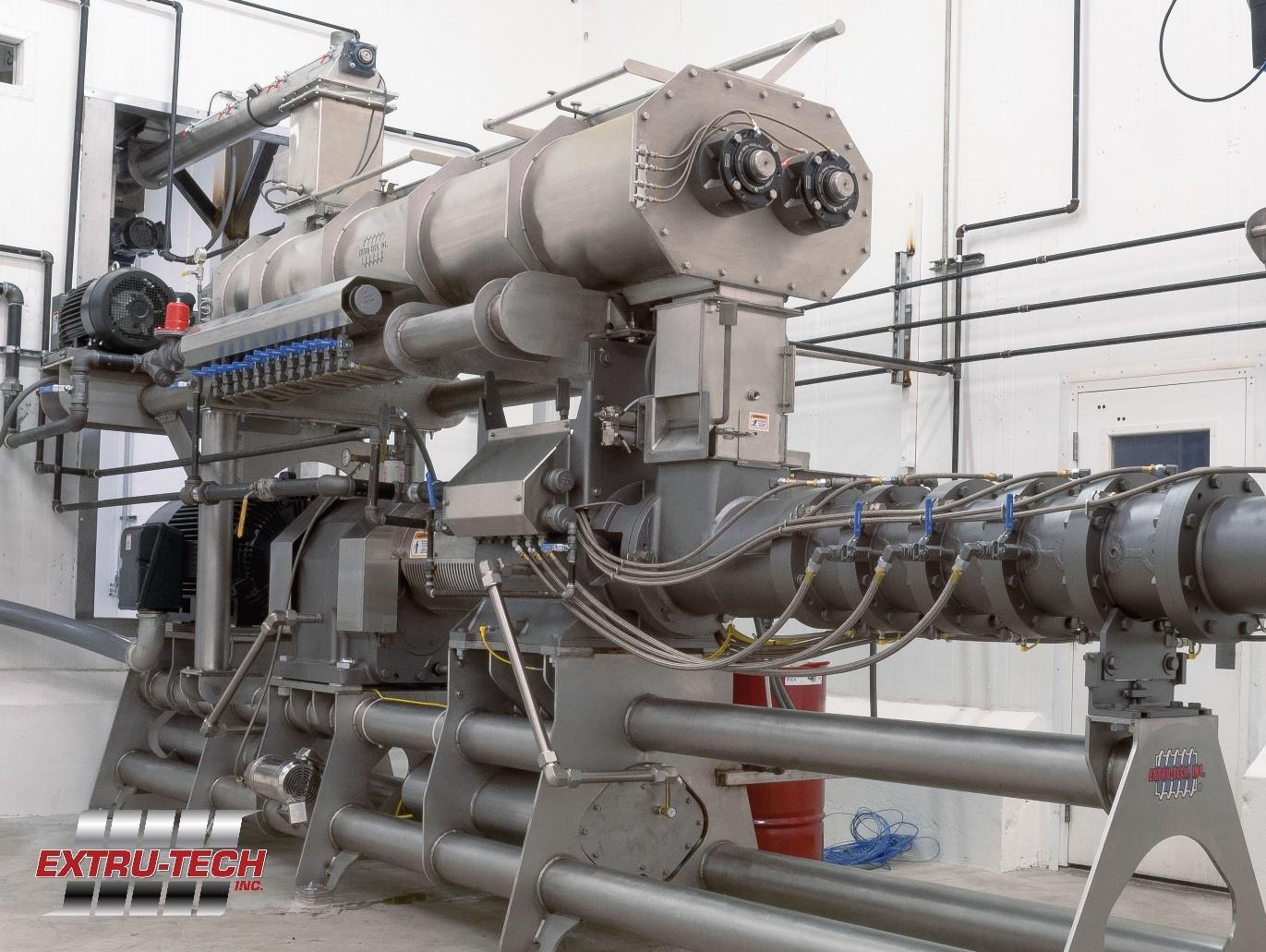 Extrusion
Extrusion
4+ MIN
24/08/2021
Maximum flexibility with a single screw extruder
More than ever, today's consumers view their pets as members of the family. Just as a father or mother wants the best food for their children, pet owners want the same for their pets. The humanization of our pets has been the turning point that has generated the greatest change in how we see and how we relate to these new members of the family. Millennials, without a doubt, are the most influential in all these changes because they are more informed and are much more demanding, especially when choosing food for their pets. They not only hope that the food meets all their nutritional and quality expectations, but also that their pet will enjoy their food a lot. If they observe that their pet does not like the food, not only do they not buy it again, they also share their experience by word of mouth and viralize it through social networks, affecting the manufacturer's sales. Although the Latin American pet food market is generally characterized by a higher level of consumption of affordable and premium foods, the consumption of super premium foods has been gaining strength as a result of consumers being more informed and, therefore, they increasingly demand better quality ingredients and sources of nutrition with greater nutritional contributions, in addition to more sophisticated ingredients. There is no definition of a super premium food, but what is certain is that pet foods that are marketed as super premium use increasingly complex ingredients. On the label it is usually crossed with the selection of raw materials, concepts such as organic, holistic, 100% natural and ketogenic, among others. But, in addition, the offer is expanding to much more sophisticated levels towards extruded foods with high levels of addition of fresh meat, with a very large variety of protein of animal origin such as chicken, salmon, turkey, duck, rabbit, lamb among others; and in the case of vegetables such as berries, apple, carrot, chard, peas, etc. As well as food for certain health conditions of pets such as obesity, sensitive skin, allergies, diabetics, neutered, gastrointestinal, liver, urinary problems, others. In this diversity of products, there are super premium grain-free or grain-free foods, which, despite having no real nutritional reason for having this condition, are produced simply because consumers seek them. Manufacturers often combine this genre with some of the sophisticated raw materials they offer such as those mentioned above. Manufacturing super premium foods, whether with or without grains, can pose significant challenges at the production level. Achieving a nutritionally complete meal requires a greater number of ingredients to obtain the proper balance, particularly with regard to amino acids and essential fatty acids. Extru-Tech has developed state-of-the-art technology to produce high-quality, aseptic foods that meet the nutritional requirements of pets and the high expectations of owners, and has extensive experience working with the largest and most important North American pet food producers. In practice, it is often thought that formulating one type of food or another, reaching all segments and using a wide spectrum of raw materials, has to do only with a formulation issue. But the truth is that the problem is much more complicated than that. The more complex the formula, we find that not all extruders on the market are capable of processing them properly and delivering a food of high nutritional quality, where the croquettes have the texture, hardness and above all the palatability that the owner of the pet expects to find, when it gives the food to its gift. There are two extrusion technologies. One is single screw and the other double screw. Much has been written about the differences between the two technologies and it is true that they do. However, you have to look at both extrusion systems from different angles to know which one is best when deciding on the investment. - When analyzing the differences in the production of food for human consumption, without a doubt, the twin screw extruder has great advantages and greater flexibility over that of a screw. - In the production of pet food and aquaculture food, today there are no significant differences in terms of product quality between Extru-Tech technology with its single screw extruder and those with double screw. What's more, it has great advantages such as: From an investment cost point of view, single screw extruders are cheaper. The cost of production in a single screw extruder is also lower, since it uses a considerably smaller motor, even producing in some cases, greater production capacity with the same product quality. The cost of maintenance and spare parts is also notably lower in single screw extruders. -Variety of products At Extru-Tech we have the technology to produce a wide range of foods in the same single screw extruder, for example: Pet food • Croquettes from 1 to 4 colors and multiple shapes simultaneously. • Bi-colored and marbled foods. • Food from inexpensive to super premium with the addition of high levels of fresh meat • Short and long semi-wet treats or prizes of 1 or 2 colors Aquaculture Feed • Floating, slow and fast sinking • Shrimp foods • Micro pellets from 0.7 mm diameter upwards With Extru-Tech technology and technical support, you will be assured of producing the best quality and most palatable foods in any category, with the lowest production, operation and maintenance costs on the market. Source: Extru- Tech
 Market Information
Market Information
4+ MIN
24/08/2021
FDA warns Midwestern Pet Foods over aflatoxin, salmonella
The U.S. Food and Drug Administration issued a corporation-wide warning letter to Midwestern Pet Foods of Evansville, Indiana, USA on August 17. 'We are issuing this corporate-wide warning letter because inspections of Midwestern Pet Foods, Inc.'s manufacturing plants revealed evidence of violations, which were shared across multiple plants and were associated with the illness or death of hundreds of pets who had eaten the company's dry dog food,' Steven M. Solomon, D.V.M., Director of the FDA's Center for Veterinary Medicine, said in a press release. FDA agents first inspected Midwestern's Chickasha plant. FDA agents also inspected the company's three other manufacturing plants. These inspections revealed evidence of significant violations of the Current Good Manufacturing Practice, Hazard Analysis, and Risk-Based Preventive Controls for Food for Animals regulation. These inspections of pet food manufacturing sites revealed apparent violations of the Federal Food, Drug, and Cosmetic Act. The initial inspection of Midwestern's Chickasha, Oklahoma plant was triggered by reports of illness or death in dogs that had eaten SPORTMiX brand dry dog food manufactured by Midwestern. Samples of SPORTMiX were later found to contain levels of aflatoxin as high as 558 parts per billion (ppb). The FDA considers pet food to be adulterated if it contains more than 20 ppb of aflatoxin. History of aflatoxin and Salmonella Midwestern Pet Foods recalls Shortly before Christmas 2020, dogs began dying with symptoms of liver disease. A common factor among the dogs was eating SPORTMiX kibble. On Dec. 30, Midwestern Pet Foods recalled the dog foods involved. By January 11, more than 70 pets had died after eating the product. On that date, Midwestern expanded the recall to include all products meeting these three criteria: containing corn, manufactured in Oklahoma and with an expiration date on or before July 9, 2022. On January 25, the U.S. Food and Drug Administration announced a list of countries to which pet food containing dangerous levels of aflatoxin may have been exported by Midwestern Pet Foods, ranging Bahrain and Barbados to Uruguay and Vietnam. As of August 9, the FDA was aware of more than 130 pet deaths and more than 220 pet illnesses that may be linked to eating brands of pet food manufactured by Midwestern, although not all of these have been confirmed. In March, Midwestern recalled several brands of pet food manufactured at its Monmouth, Illinois plant, after samples tested positive for Salmonella, including brands CanineX, Earthborn Holistic, Venture, Unrefined, Sportmix Wholesomes, Pro Pac, Pro Pac Ultimates, Sportstrail, Sportmix and Meridian brands produced at its Monmouth, Illinois production facility. In inspections, the FDA found that Midwestern's food safety program appears inadequate to significantly minimize or prevent Salmonella in its pet food. The FDA has requested a written response to the warning letter from Midwestern within 15 working days stating the specific steps they have taken to correct any violations. Failure to adequately address any violations promptly may result in legal action, including product seizure and/or injunction. Toxicologist, vet catch dog food toxin after early deaths On the dry plains of the American West, Aspergillus fungus found the right conditions for colonizing corn kernels weakened by drought or improperly stored. That fungus released a poison, or mycotoxin, into the grain. That corn was used to produce contaminated pet food. Shortly before Christmas 2020, dogs began dying with symptoms of liver disease at a southern Missouri dog breeding kennel. Veterinarian David Sikes sent dog food samples to his former professor Tim Evans, animal toxicologist at the University of Missouri. The dog food, Sportmix High Energy brand, tested positive for high levels of aflatoxin, a mycotoxin found in drought-stressed corn or harvests stored in humid conditions. Sikes recognition of symptoms and Evans' analysis may have caught the aflatoxin-contaminated dog food early, potentially saving lives. 'Aflatoxins are heavily regulated,' Evans said. 'Generally, there is an appropriate representative testing occurring before incorporation of goods, and in many instances in the finished product. Somehow, those policies were either ineffective or not followed. I know no more details than that.' On Dec. 30, the product's maker Midwestern Pet Foods recalled the dog foods, which had already been distributed in both brick-and-mortar and e-commerce channels. By January 11, more than 70 pets had died after eating the product, according to reports submitted to FDA. On that date, Midwestern expanded the recall to include all products meeting these three criteria: containing corn, manufactured in Oklahoma and with an expiration date on or before July 9, 2022. That location and date may have been the key to this deadly recall. 'Aflatoxins and other fungal toxins are commonly produced under particular weather conditions,' Evans told Petfood Industry. 'Aflatoxins in particular are produced under drought conditions. Under drought conditions the fungus gains access to the corn. Then the hot and moist conditions that result in toxin production can occur in the field, or can occur in storage conditions.' Oklahoma's dry environment may have contributed to the risk. Portions of western and southern Oklahoma ranged from abnormally dry to extreme drought in 2020, according to the University of Nebraska U.S. Drought Monitor. 'All of the contaminated products came out of Midwestern Pet Foods' plant in Chickasaw, Oklahoma,' Evans said. 'Oklahoma is very frequently under drought conditions. It's not unexpected that there might be contamination.' Source: All Pet Food
 Market Information
Market Information
6+ MIN
23/08/2021
Por José Fernando Raizer
Use the SAC as a tool for continuous improvement
But I want to believe that this is not the case. When a customer contacts your company to express dissatisfaction with your product, they should certainly experience some conflicting emotions ... On the one hand, he feels that he has problems: his product has not fulfilled the expectations of the Client and dissatisfied Clients mean losses of future sales ... On the other hand, you are lucky. Most customers don't complain. Complaint ratio can vary from 1:30 to 1: 300 - This means that for every customer who complains, up to 300 unhappy customers don't - they just change the product and the supplier... And they speak badly of the product. When a customer complains, he is giving them a golden opportunity! You can now respond to the disappointed Customer, apologize, make it up to him if necessary, and make him feel better about the unpleasant experience he has had with your product. In addition, he is receiving a valuable return that can and should be placed as part of your company's corrective action plan. The checklist below should be noted in your complaint handling policy. If you answer "NO" to any of the questions below, you should review your policy on handling Customer complaints. Encourage complaints There are companies that do not encourage complaints. While complaints can be unpleasant, there are three good reasons to encourage Customers to complain: 1-) If a food match does not meet your quality standards and you go to the field, the first sign of disaster will come from your Customers. If your Customers are concerned for any reason, it is extremely important that they are encouraged to complain. A quick response to a complaint can even trigger a recall, but on the other hand it can save your business from total catastrophe. A message like this on the packaging goes a long way: 'We do our best to provide your pet with the highest quality product. However, if you are not satisfied in any way, please call toll free ... or email ... " Remember two things daily: • A poor quality batch (or "batch") of 3000 kg after packaging in 1 kg packs can mean 3000 serious problems in the field ... • To kill an ox it is necessary to hit it on the head and bleed it out. To kill dozens of small pets you only need to receive a batch of ingredients contaminated with certain mycotoxins in fatal concentrations and put it in their packaging ...... - disaster is more than certain. 2-) If it makes it difficult for the Customer to file a complaint, not only will you be unhappy, but you will not notice it! The least they can do is spread the word about their bad experience with your product to their friends. They can also contact the Consumer Protection System, consumer Customer groups, the press or other authorities. 3-) You need this information submitted by a complaint. Remember: by encouraging this action by Customers, you are not looking to increase the number of dissatisfied Customers, but only the percentage of those who express dissatisfaction with your product. Once I was surprised and disgusted to hear from a PET manufacturer: "This phone number is useless ... It only increases the number of complaints". Handling customer complaints Simply putting a nice message, 0800 phone number, and email address on the package is of little use if you don't have a service structure. If you do not have an adequate service structure to serve the Client, it would be better if you did not put a phone or message on the package. It is preferable that they are not happy because it is difficult to contact you, rather than being extremely irritated due to terrible service! The information that the Client wants to transmit can sometimes arrive incomplete, a true 'square ball'. It is the responsibility of the assistant to 'round up' this information so that it is useful for the Company, and at the same time to convey to the Client that their message has been heard. The following key principles should guide your customer service system • Establish human contact as quickly as possible! If the person is calling on the phone, answer courteously and without delay. If it is not possible to respond immediately, give the caller the option to leave a message and contact them immediately. If the contact was by email, immediately initiate a phone call. • Make sure your customer service team is properly trained and motivated. The attitude of an assistant should make it clear to the Client that her complaint will be well represented before the Company. This attitude of goodwill and caring eliminates much of the feeling of anger and confrontation common in the complaint. If the assistant establishes a defensive behavior of the company "face to face", the feeling of confrontation will increase. • Don't take responsibility automatically. Acknowledge the legitimacy of the complaint, show empathy and respect the fact that the Customer had a negative experience, but it is not necessary to admit the possible fault. Assure the Client that the event they complain about will be immediately referred to the Quality Assurance Sector. Provide Customer with a protocol number, ensuring that they will contact you about that complaint. • Make sure NO ONE other than the designated and trained Customer Service Team will handle Customer complaints. Passing the call to the Production Manager can be extremely disastrous! • If a receptionist or secretary receives a call from a Customer, make sure that person is instructed to pick up the Customer's phone number before putting the call through to Customer Service, or ask them to call another number. Letting the customer "float" in the void between two calls can be extremely annoying! Urgent veterinary complaints Any claim in which the Customer is concerned that their Pet has become ill from consuming their product, or any claim related to any palatability problem, should be handled differently from other claims. Any company veterinarian or nutritionist should immediately contact the Client to determine the exact nature of the claim. If the pet has been examined by a client's veterinarian, it is very helpful for the company veterinarian to discuss the case with the client's veterinarian. The product that is the subject of the complaint will be sent immediately to the company's laboratory. Samples of that food combination must be located and analyzed. The company vet can sometimes determine if a palatability complaint is real; It may have happened that there was a sudden change of product to which the animal was accustomed or that it had a health problem not related to food. The company representative can also advise the owner on the feeding habits of the animal. Complaint follow-up The minimum that can be expected of an employee who receives complaints from Clients is that they have available and follow a protocol FORMALIZING the complaint, which must be numbered, sent to those responsible for the progress of the necessary actions, and monitored upon return. to the Client. ... Isolated complaints like: "Such a merchant complains that the cookie shape is too small" or "too big" or "REX is softening the poop" are absolutely useless. Especially when these complaints come from the sales force itself, from retailers or resellers, the ball has to be "round", not square. The Quality Assurance Sector and the company's management cannot take corrective actions without having the necessary information at hand. Client compensation policy The way to eventually compensate a Client cannot be solely in the head of the Sales Manager. There must be a well-defined policy for this type of action. Complaint evaluation The General Manager of the factory should include in his weekly meeting with his employees the habit of following up on pending complaints ..... and for obvious reasons. Employee participation and commitment must be methodically induced throughout the team. Use your ERP resources Most (if not all) management software on the market has a SAC module, and within it a database-based complaint management system ... If your company's ERP has this feature, use it. But at least (and not less), a form should be used to formalize the complaint internally according to the example suggested below: Source: All Pet Food
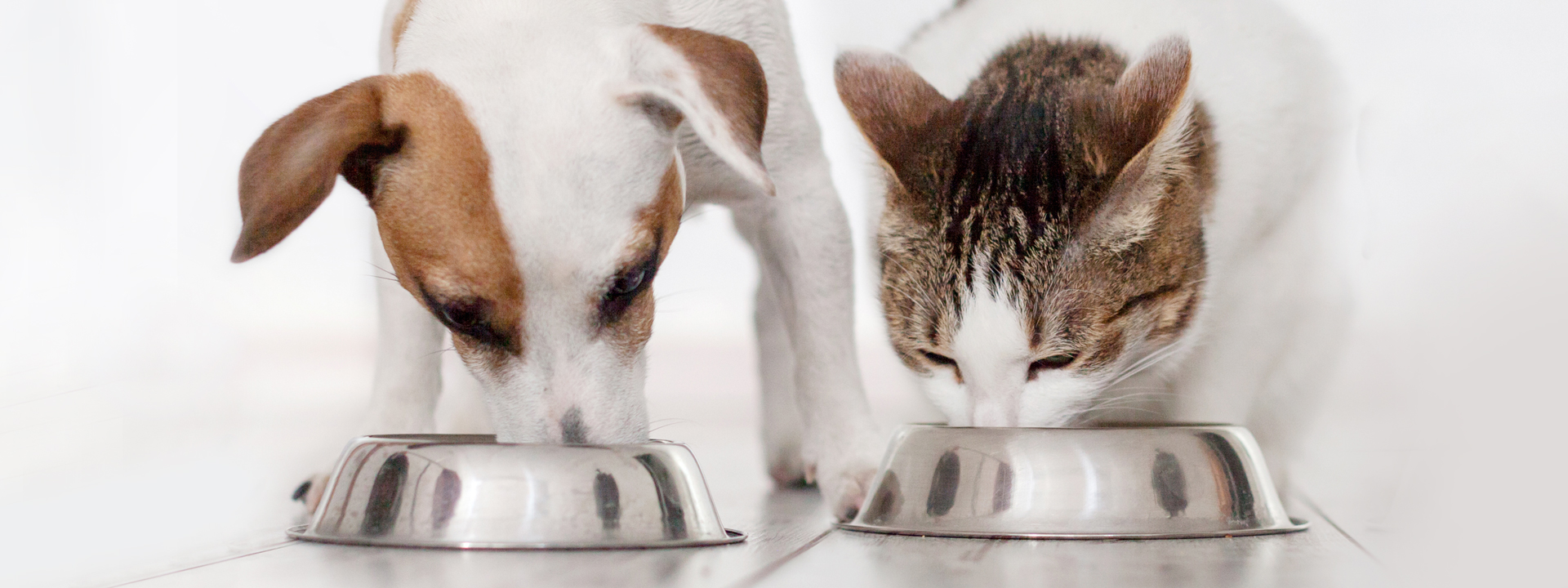 Formulation
Formulation
1+ MIN
20/08/2021
Dog vs Cat: from senses to feeding behavior, anatomy of a meal
With different sensory equipment and anatomy, cats and dogs don't behave the same when facing food. Like humans, cats and dogs have their own feeding behaviors. On close observation, it's easy to see that their way of eating is not the same. And this difference starts right from the food selection step. Find out in this infographic why cats and dogs don't eat the same way Read more about this article HERE
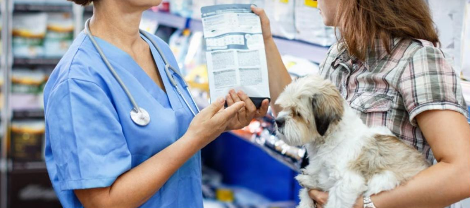 Formulation
Formulation
4+ MIN
19/08/2021
Por Erika Stasieniuk
Optimal nutrition for dogs and cats
Unlike farm animals, pet nutrition must follow a nutritional concept beyond the minimum and functional, remaining within the optimal range, according to Figure 1. However, this range allows many variations for each formulation, being able to cover a very wide diversity of diets, creating products with variations in ingredients and even nutrients, but which in the end achieve optimal health Figure 1- Graph that represents the dose-response curve of nutrient consumption. Based on the figure above, we can imagine where the products of the main commercial categories that exist today in pet food fit: economy, premium and super premium. Inexpensive rations present the nutrients on the optimal area curve, but closer to the minimum. Premium products, on the other hand, move further towards the highest point of the curve. The super premium portions, meanwhile, are at the highest point of the graph without reaching the "excess" area. As the trend is always to develop superior quality products, the formulator must be aware of the balance between the great and the exaggerated of nutritional fashions so as not to reach excesses that compromise the health of dogs and cats. Thus, the new trend is to satisfy the essential nutrient needs in an optimal way for each species and, together, to present products with functional and nutraceutical properties that promote beneficial effects on health, guaranteeing the customer the longevity of their pet. We mention three points that the knowledgeable formulator must add to diets to achieve optimal nutrition: 1) INTESTINAL HEALTH The gastrointestinal microbiota plays an important role in animal health. Prebiotics and probiotics are food additives capable of maintaining an adequate balance of the microbiota (Bielecka et al., 2002). Several studies have shown beneficial effects on the health of dogs and cats, such as improvement in the consistency and smell of feces, regulation of the immune system, prevention and improvement in cases of diarrhea and anti-inflammatory and regulatory effects in the intestine in diseases of the gastrointestinal tract. (Vasconcelos et al., 2018). Microorganisms used as probiotics are usually non-pathogenic components of the normal microbiota, such as lactic acid bacteria (major genera Lactococcus, Lactobacillus, Streptococcus, Bifidobacterium, and Enterococci). In general, the recommendation is to incorporate probiotics after extrusion of the food, due to the high temperature used in the process. However, we know that with the advancement of research and product development, probiotics for industrial use, capable of withstanding the heat of extrusion, are coming to the market. Prebiotics, for their part, are non-digestible nutritional ingredients that act selectively on the microflora, stimulating the growth and activity of one or more beneficial intestinal bacteria (ANFALPET, 2010). They can be obtained naturally in the seeds and roots of some vegetables such as chicory, beets, artichokes, asparagus, barley, rye, soybeans, chickpeas and lupine. The most common forms available on the market are Saccharomyces cerevisiae cell walls or yeast cell walls or mannanoligosaccharides (MOS), which together with fructooligosaccharides (FOS), include inulin and oligofructose. 2) ANTIOXIDANT REINFORCEMENT As with food, oxidation reactions also occur in the cells of living tissues. In this process, radicals with unpaired electrons are formed in the last layer that present intense chemical reactivity, forming so-called free radicals. They are normally produced to neutralize unwanted attacks on the body, such as bacteria and viruses, but when they are in excess and / or are not neutralized, they can often cause irrecoverable damage to membranes, DNA and enzymes (Borges et al., 2003). Thus, the role of antioxidants in the diet came to have a broader connotation and, when they are present or incorporated in food, they can be effective in combating the formation of free radicals in animal tissues (Borges et al., 2003) . The most widely used antioxidants have been alpha-tocopherol (vitamin E), beta-carotene (precursor of vitamin A), ascorbic acid (vitamin C) and polyphenols. 3) INFLAMMATION CONTROL Fatty acids are capable of attenuating the effects of the inflammatory process by reducing the synthesis of eicosanoids and inflammatory cytokines. The fatty acids linolenic acid (ALA), eicosapentaenoic acid (EPA) and docosahexaenoic acid (DHA) cannot be synthesized in sufficient quantities by the body, so they must be provided through the diet. In some species, the fatty acids EPA and DHA can be synthesized from linolenic acid, but dogs and cats have a limited ability to carry out this conversion. Therefore, it is of the utmost importance that they are provided in the diet. The profile of these fatty acids in a diet can be changed according to the source of fat provided: animal tissues, such as those of marine animals that feed on algae and have high concentrations of DHA in their tissues, while sources of plant origin have higher concentrations of ALA in its constitution. Fish oil, for example, is a great source of EPA and DHA. BIBLIOGRAPHIC REFERENCES: ANFALPET - Manual do Programa Integrado de Qualidade Pet. 2010. 612p. BORGES, F. M. O., SALGARELLO, R. M., GURIAN, T. M. Recentes avanços na nutrição de cães e gatos. In: SIMPÓSIO SOBRE NUTRIÇÃO DE ANIMAIS DE ESTIMAÇÃO, 3, 2003 São Paulo. Anais... Campinas, p. 21-60, 2003. BIELECKA, M.; BIEDRZYCKA, E.; MAJKOWSKA, A. Selection of probiotics and prebiotics for synbiotics and confirmation of their in vivo effectiveness. Food Res. Int., Amsterdam, v.35, n.2/3, p.125-131, 2002 GROSS, K. L.; YAMKA, R. M.; KHOO, C.; FRIESEN, K. G.; JEWELL, D. E.; SCHOENHERR, W. D.; DEBRAEKELEER, J.; ZICKER, S. C. Macronutrients. In: HAND, M. S.; THATCHER, C. D.; REMILLARD, R. L.; ROUDEBUSH, P.; NOVOTNY, B. J. (Ed.). Small Animal Clinical Nutrition. 5 ed. Topeka, EUA: Mark Moris Institute, 2010. p 49-105. VASCONCELOS, S. S. R. S. L.; Uso de probióticos manipulados e seus efeitos na saúde de cães e gatos: uma revisão de literatura. João Pessoa, 2018. Source: All Pet Food
 Palatants
Palatants
3+ MIN
18/08/2021
Applying pet food palatants
Liquid palatants Liquid palatants are delivered in bulk tankers or in an intermediate bulk container (IBC). Tankers are advised when large quantities are used; otherwise IBCs are recommended. IBC use also depends on the factory layout or use of multiple palatants. Commonly stored on site in agitated storage tanks, liquid palatants perform best when maintained between 70°F and 95°F. Due to natural physical characteristics, liquid products may exhibit some separation. The separation will not have an effect on palatability and can be controlled by agitation just before use. When a tank is used to store the bulk delivery, the tank must contain an agitator to blend the product before use to achieve homogeneity. Mix the product just enough to keep it moving and to avoid inclusion of air. Too much air inclusion can cause foam which could affect the product quality. Blending the product in the tank will also prevent potential formation of a water layer on top created by condensation when temperature differences occur. A watery layer will change the pH and preservative concentration causing a potential risk for mold and other bacteria to grow on top of the product. An agitator in the tank will also help prevent this watery layer. To apply liquid palatants, suitable coating systems include drum coaters, batch coaters, screw coaters, augers or spinning disks. Set up the system to add the fat first, then the palatant. (Figure 1). Once complete, blend kibbles properly to be sure a homogeneous coating is reached and to allow the fat and palatant to fully absorb. Blending time depends on factory layout, required throughput and coater type. For optimal kibble performance when applying a liquid palatant: Keep air out of the palatant application process. Include baffles in mixing tanks and eliminate free-fall product return on recycle systems to help prevent fat from oxidizing, which can decrease palatability performance. Avoid over-application. Carefully synchronize the kibble feed rate and the palatant application rate to prevent excessive application, which could increase moisture and lead to mold growth if not properly monitored during production. Retention time. After the fat and digest dosing, a certain retention time allows flavors and moisture to distribute homogeneously over the kibbles. Choose the correct spray nozzle for your application. Two recommended nozzle types are flat spray pattern and full cone spray pattern. The right nozzle choice depends on coater type and setup. The size, or opening, of the nozzle depends on the amount of the liquid you want to apply. The nozzle should form very small droplets, not a mist or a pouring liquid. Prevent overspray. Aim spray nozzles to avoid excessive buildup on the augur or coating drum, which could compromise pet food quality over time as fines will stick to the liquid creating lumps composed of materials from multiple batches. Carefully position palatant and fat spray nozzles. Ensure no more than 10% overlap in palatant spray patterns to support consistent performance. Also strive for no overlap between the fat and palatant application. Dry palatants Pet food palatants are packaged in standard dry bags or bulk bags. palatants are added after the fat or liquid palatant application. (Figure 2) The fat or liquid palatant acts as a tacking agent and is an integral part of the total palatability solution. Dry palatants are fed into the coating system using a loss-in-weight or a volumetric feeder. Pulse dosing should be avoided to obtain a homogeneous spreading of the powder. The hopper of the feeder should contain an agitator to avoid bridging of the powder which would disrupt an even powder supply. (Figure 3: Palatant Application Process) For optimal kibble performance when applying a dry palatant: Coat kibbles evenly. Discharge kibble onto a plate or splitter to facilitate continuous flow of the desired kibble quantity which will secure accurate palatant dosing. Avoid impeded flow. The small size of the feeders often requires the use of vibrators or flow assist devices. Avoid palatant buildup on the coating system. Maintain the desired kibble level before applying dry palatant to avoid such buildup. Source: AFB Intenational
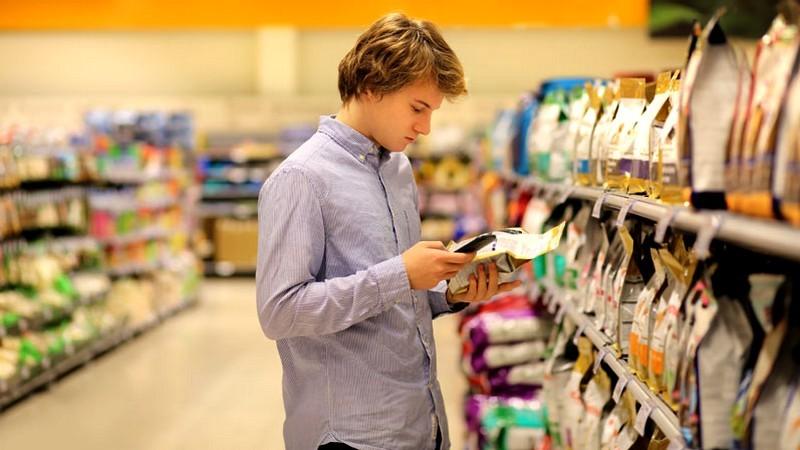 Trends
Trends
4+ MIN
18/08/2021
Pet well-being focus drives demand for rice protein in pet foods
In 2019, the global pet food market had a value of €73 billion and it's predicted to reach €103 billion by 2027.1 This expected growth is being driven, in part, by increasing demand from pet owners for more natural and premium products, which is a direct reflection of what is happening in human nutrition. According to the American Veterinary Medical Association (AVMA): 'Trends in companion animal nutrition often mirror those in humans, reflecting the desire of pet owners to feed them diets that they consider to be healthy and beneficial for the well-being of their pets.' As consumers move towards purchasing pet foods that contain more natural, healthy and safe ingredients, governments are encouraging this transition and also demanding more label transparency when selling such products. Pet owners want their pets to stay healthy and foods containing health-promoting ingredients can help to support their pet's well-being. They are also concerned about food allergies; as such, there is now a growing demand amongst owners for hypoallergenic and clean label pet foods that address these needs. Here, Karel Thurman, Commercial Director at BENEO Animal Nutrition, discusses how producers can make the most of this trend using rice protein to create veterinary diets and premium pet food products. Human and pet trend crossover continues Although limited ingredient diets have been translated into more transparent and recognisable ingredient lists, the original purpose of these diets was to alleviate pet allergies. Veterinary data show that 20–30% of dogs and approximately 15% of cats that have been diagnosed with pruritus, allergic skin disease or atopic dermatitis, suffer from cutaneous adverse food reactions (CAFRs), which are likely to represent food allergies (FAs) of immunologic origin.2 Studies such as these substantiate a driving demand for hypoallergenic ingredients and products that can help owners to support their pet's limited-ingredient diets, as well as the prevention of allergies. BENEO's research has shown that two in every five respondents say that using no allergens — such as gluten, soy, corn and wheat — makes food seem a lot healthier. This highlights that concern about food allergies applies to the majority of pet owners, meaning that pet foods that support limited-ingredient and hypoallergenic diets hold mass appeal and is an area sure to grow in popularity in the years to come. Other consumer trends that continue to crossover to the pet food category include increasing demand for added protein, digestive wellness and plant-based products. Digestive wellness is also an increasing concern. Mintel figures show that 81% of European cat and dog food buyers believe that actively looking after their pets' digestive wellness is essential for their overall health; as such, natural, easy to digest ingredients are therefore a key purchasing decision driver for pet owners.3 With pet owners becoming increasingly conscious about what is in their pets' food, it's no surprise that demand for hypoallergenic, highly digestible and plant-based veterinary and premium diets is on the rise. To meet this need, more and more manufacturers are incorporating rice protein into their pet foods. This is largely because of the fact that it is a high quality, concentrated protein source with an excellent amino acids profile. Rice protein for pets with food allergies Similar to humans, many cats and dogs suffer with gastrointestinal issues. There can be many causes for these issues, including parasites, viruses, bacterial infections, pancreatitis or simply eating something they shouldn't. For pets with symptoms that only present when eating a diet, gastrointestinal problems can also be caused by a food allergy or an intolerance. With unique protein and carbohydrate sources, limited-ingredient diets reduce the number of potential triggering allergens in the end product. As a hypoallergenic, clean label ingredient that is free from the most frequent food allergens, rice protein is well suited for use in such diets. With this in mind, BENEO's rice protein is a high quality and concentrated protein with a protein content of more than 80%, which is produced in Europe from non-GMO raw materials sources. Rice protein for sensitive pets In pet foods when high digestibility is required, rice protein is also the ideal ingredient. It has shown an apparent digestibility of 87% in dogs, making it not only attractive for pets with allergies, but also for sensitive pets such as puppies and older animals.4 In addition, BENEO's rice protein is produced in alkaline conditions, which leads to significantly better digestibility than other rice proteins that have been isolated using an acidic treatment.5 By: Beneo
 Minerals
Minerals
3+ MIN
17/08/2021
Mineral choice matters: Maximizing pet food nutrition
These can be broadly classified as either inorganic trace minerals (ITNs) or organic trace minerals (MTOs). The latter are so named because they are complex, or otherwise associated, with organic linking groups. These linking groups include amino acids, small peptides, and organic acids, which influence the strength of mineral absorption. When comparing organic trace minerals, many factors must be considered, but basically the interaction force between the mineral and the binding group is the most important factor influencing bioavailability. By improving the binding of MTOs, finally, the bioavailability of the mineral can be increased. Therefore, the choice of the linking group is critical to the effectiveness of organic minerals. In recent years, research has highlighted the differences that exist between individual products. A poor choice of the linking group can result in the production of products that offer no benefit over inorganic mineral sources. In essence, not all MTO products are the same. Antagonisms in food and feed Increasingly, interactions between food components, such as trace minerals, are under scrutiny, for possible negative interactions with other components of the diet, often overlooked. Recent studies have focused on evaluating these potential antagonisms. In this regard, it is useful to highlight the differences, not only between inorganic and organic trace minerals, but also to illustrate that not all MTO products are produced equally. Impact of minerals on the stability of vitamins The oxidation of vitamins, such as vitamin E, can reduce the function of vitamins, and its cause could be the oxidation of fats but, frequently, it is due to the action of trace minerals. The type and particularly the form of the trace minerals will influence their effect on the stability of the vitamin. When it comes to trace minerals, oxidation-reduction reactions are the predominant cause of vitamin instability. The type of trace mineral will influence its reactivity, and, more critically, the way the trace mineral is presented plays an even more important role in its influence on the stability of vitamins. Studies examining the stability of vitamin E in the presence of inorganic or organic minerals show that in the inorganic form, the minerals can be detrimental to the stability of the vitamin molecule. However, depending on the source of MTO, the use of chelated minerals may not cause such a dramatic decrease. Antioxidant function may be compromised by mineral choice Additional research evaluating the effect of minerals in food components has established that commonly used antioxidants can be compromised with the use of inorganic minerals. Furthermore, the data indicate that in cases where MTOs have shown weak mineral absorption, there is a significant negative impact on antioxidant activity. The choice of organic trace minerals, therefore, plays a fundamental role in ensuring the quality and stability of food components. Conclusions When it comes to mineral choice, organic trace minerals are much less likely to adversely affect essential nutrients, such as vitamins, compared to inorganic sources. However, not all forms of organic minerals react in the same way. Therefore, we encourage diet formulators to pay more attention to their ingredient choices in order to not only maximize nutrition, but also the quality and stability of pet food. Source: Alltech
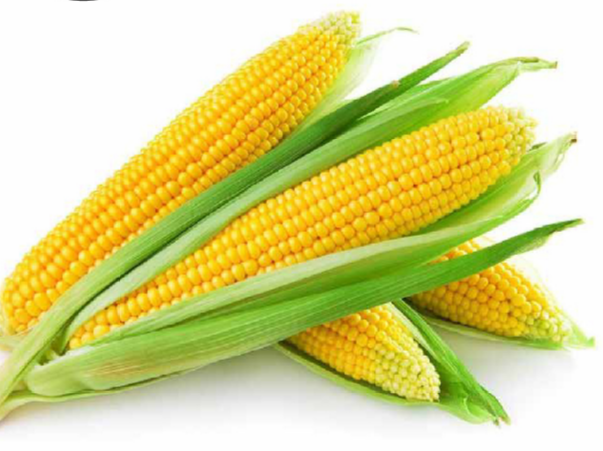 Market Information
Market Information
4+ MIN
16/08/2021
Opportunity and functional ingredients - Trends
I received the photo above from a friend, obviously as a joke. Today's news is that China anticipates shortages and is beginning to pressure its growers to seek alternative ingredients for corn and soybeans! We always had abundant availability of corn and soybean meal, and this necessarily led us to an interesting situation from an engineering point of view: "Very few factories have more than 12 dosing silos on the scales, being more common to find 6 silos or 9 silos at most.." With regard to storage outside the factory house, we often find flat or conical bottom corrugated silos for corn, medium capacity cone bottom for soybean meal, and at most one or two out-of-house storage options for other grains, such as sorghum or wheat As a general rule, the distribution of the dosing silos is as follows: 2 corn silos that are dosed together to speed up dosing time. 1 or 2 silos of soy meal 2 silos of meat meal, with different nutritional matrices (generally for the contribution of Phosphorus in the formula). 1 silo for any ingredient of opportunity or that appears in the guarantee levels and whose inclusion is mandatory (most common in PET FOOD). And finally, a small battery of mini silos for salt, mineral ingredients and premixes. The situation becomes even more restricted when it comes to PET FOOD factories. In addition to the 6 (six) silos mentioned, it is mandatory to have two or three additional silos for different types of extrusion reprocessing, (e.g. Colored) two or three additional silos for viscera meal, meat meal with high content of protein with different addition matrices - And that's if you want to work right on the low-cost formulation regimen, and not just formulate on average batch nutrients - in which case you lose a lot of money. In short, the 'convenient' engineering situation of having very few dosing silos was generated by the abundance of corn and soy flour throughout the year ... sometimes more expensive, sometimes cheaper, but always with a good offer. In more than one visit to feed mills in Europe, I noticed that the situation there is usually totally different. I have seen factories in the Netherlands with around 30 to 40 (forty) ingredient dosing silos on multiple scales. An excellent port structure and capillary network of channels bring ingredients from all over the world to the factories, usually built on the banks of the canals, thus allowing the unloading of huge ships through a system of air aspiration and transport by dilute phase. Cassava flour from Thailand, dried coconut pulp from the Philippines, beet pulp from Russia, different grains and brans from different parts of the world, just to name a few .... and they also use corn and soybeans. Currently, in factories, the low availability of dosing silos is an important limiting factor for Purchasing / Logistics. Offering an opportunity batch of an alternative ingredient faces the following barrier response: "We don't have a dosing silo to put this in." The buyer's argument is: 'But can't it be put by hand in the mixer? ": a-) It does not work ... unfortunately the system is automated and the option would be in small batches in the container, without adequate weight control " b-) This ingredient needs to be ground first, and we do not have post-grinding silos, nor a dosing silo. The lack of additional dosing silos leads to a situation where it is virtually impossible to incentivize PURCHASES that charge to seek alternative ingredients of opportunity ... Here we have a serious problem, China desperately needs to reduce the cost of inputs in its feed, and has already started a frantic search for ingredients of opportunity that allow carrying out the announced "cut", or reduction of corn. and soy ... And this action will make things even more difficult here, and in other countries. I recommend to all factories facing similar problems: 1-) For PET FOOD FACTORIES and BALANCED FACTORIES To the extent of available spaces, make a "cluster" of 4, six or nine dosing buckets on the scale (s), (simultaneous weighing) and include it in the automation. And encourage Purchases to occupy them. 2-) For PET FOOD FACTORIES In addition to the suggestion in item 1, look for 'functional ingredients' on the market that are difficult to process with a single screw extruder, considering the possibility of purchasing a twin screw extruder. ADVANTAGES OF USING THE DOUBLE SCREW: MAY EXTRUDE MATERIALS TOO VISCOSE, OILY, OR TOO WET, WHICH COULD "SLIP" IN A SINGLE SCREW EXTRUDER. REDUCED 'CAPACITY' = MORE UNIFORM PRODUCTS WITH MORE INTRICATE FORMATS ARE POSSIBLE. THEY ARE LESS SENSITIVE TO PARTS WEAR THEY ARE SELF-CLEANING (EASY CLEANING) THE SHIRT IS SMOOTH .... ALTERNATIVE FUNCTIONAL INGREDIENTS (EXAMPLE): COOKIES / BREAD FLOUR PREPARED MEAL ADDITIONS MEAT RESIDUE PASTE CASEINATES (DAIRY BY-PRODUCTS) FATS AROMAS, PALATANTS PLANT AND ANIMAL PROTEIN (BREAKS THE FIBERS) The truth is, the shortage outlook will get worse before it gets better. Those who go ahead in search of alternative solutions will have a great chance of surviving and standing out in the market. Author: José Fernando Raizer Source: Ingredients & Nutrients Magazine
 Formulation
Formulation
10+ MIN
13/08/2021
Animal Flours: Alternatives to Enhance formulations for Dogs and Cats Foods
Between 2013 and 2018, there was an increase of almost 7 million domestic animals in Brazil, according to IBGE and the Instituto Pet Brasil. This report also revealed the preference of families for dogs, there are more than 54 million in all regions of the country. However, the number of cats was the one that grew the most in the period studied, there were more than 23 million pets in 2018. The significant growth of the domestic animal population in Brazil supports the growth of the PET product market, which, in 2018 alone, moved more than 34,000 billion Brazilian reais. More than R $ 15 billion was spent on food alone! The opportunity for pet food producers to win a share of this market is very clear. But just as important as selling is offering products that ensure the quality of pet food from consumers willing to show their love by spending more and more on animals. To develop and deliver adequate rations for the health and well-being of PET, all the care is little. Producers must know the nutritional needs of each species and choose the best ingredients so that their products are a balanced diet option for animals, since there are several composition options such as beef, chicken, pork, fish, cereals, vegetables, vitamins and minerals. Next, we are going to read more about the nutrition of dogs and cats and how their nutrient demands must be considered for the correct formulation of the rations. The nutritional needs of dogs Like all pets, dogs need a balanced diet to lead healthier lives. Here are the essential components of the diet of these pets. Proteins: have the function of building muscle tissue, transporting substances and communication between organs, and strengthening the immune system. They can be of plant or animal origin, the latter of high biological value. While they are puppies, dogs need to grow. In their later years, when they tend to lose muscle mass, they need to make up for this loss. Therefore, in these phases, the diet must be rich in protein to respond to these needs of the animal. Still, according to the guide "Your dog's nutritional needs" produced by the National Research Council (NRC), puppies up to 5 kg should consume about 56 g of protein each day. For adult dogs, with a body mass of about 15 kg, the recommendation is that they consume 25 g of protein. For elderly dogs, the NRC indicates a formulation with higher protein content, around 75g of protein per 1000 kcal. Fats: responsible for maintaining healthy skin and coat, helping brain and vision development, and playing an important role in the structural function of cells. Puppies fed low-fat diets develop thick, dry fur and skin and are more vulnerable to infection. The NRC guidance also reveals that dogs with a body mass of up to 15kg should consume 14g of fat daily. In the case of older dogs, whose metabolisms are less efficient, lower calorie diets and lower fat content are essential to prevent obesity, a recurring problem in this age group of the animal. Animal oils such as poultry oils and pork fat - which use fresh raw material - are great sources of lipids for canine formulations. Being of animal origin, they have a high digestibility and palatability, in addition to guaranteeing essential fatty acids for the development of the pet. Carbohydrates: they are the main source of energy in dog food. This rule applies to all stages of development of the animal. In terms of energy, the NRC guide says that puppies with body mass up to 5 kg need 990 kcal / day. Active adult dogs with a body mass of approximately 20 kg need 1353 kcal / day and active elderly dogs with a body mass of 20 kg need 1093 kcal / day. Fibers: guarantee a good functioning of the intestine. In special cases, abundant fibers should be part of the diet, as is the case in dogs with constipation problems. In general, the NRC reports that the daily diet of an adult dog can contain up to 50% carbohydrates of the total mass of the food, including between 2.5 and 4.5% fiber. A minimum of about 5.5% of the diet should come from fat and 10% from protein. Vitamins: they are related to the health of vision, skin, antioxidant activity, clotting factors, among others. According to the guide, some vitamins are necessary in the diet of dogs, such as vitamins A (379 µg), D (3.4 µg), E (8 mg) and thiamine (0.56 mg). Vitamin A is directly related to the prevention of diseases in the vision and respiratory diseases and with an increased susceptibility to infections. Dogs fed diets lacking in vitamin E show signs of skeletal muscle deterioration, reproductive failure, and retinal degeneration. Thiamine deficiency can lead to brain damage and other neurological abnormalities. In addition, vitamin K is responsible for blood clotting, and the B-complex vitamins are involved in the activation of ions and the synthesis of neural tissue. Minerals: participate in metabolic reactions, nerve impulses, muscle contraction and promote healthy bones and teeth. According to the NRC, calcium (1.0 g) and phosphorus (0.75 g) are essential for strong bones and teeth. The guide describes that dogs need magnesium (150 mg), potassium (1.0 g) and sodium (200 mg) for the transmission of nerve impulses, muscle contraction and cell signaling. In addition, the NRC notes that many minerals that are present in only small amounts in the body, including selenium (90 µg) and copper (1.5 mg), act as auxiliaries in a wide variety of enzymatic reactions. A calcium deficiency in the diet can result in severe bone loss, skeletal abnormalities, and pathological fractures. Excess mineral, on the other hand, can also cause skeletal abnormalities, especially in large puppies. Cats Cats are carnivorous animals, so most of the nutrients they need are of animal origin. Below we highlight the composition of the ideal diet for domestic cats. Proteins: provide essential amino acids for various vital functions, such as the synthesis of antibodies, enzymes (which regulate numerous metabolic functions), hormones, tissues, as well as providing a source of energy and promoting an appropriate pH balance for the body of these animals. Protein raw materials of animal origin are more digestible for cats, such as poultry, cattle, pork, fish and eggs. These sources have high-quality complete proteins, capable of supplying all the essential amino acids. Taurine, for example, is an essential amino acid for cats, the minimum daily requirement is between 35 and 56 mg for an adult cat. This amino acid helps prevent eye and heart disease. According to the 'Your Cat's Nutritional Needs' guide prepared by the National Research Council (NRC), 10g of protein / day is recommended for kittens with approximately 800g of body mass. For adult cats with a body mass of around 4 kg, 12.5 g / day of protein is recommended. Fat: it is involved in cell integrity since it is an essential part of plasma membranes. In addition to participating in metabolic regulation, they add shine to the animal's coat. In addition, fats improve the taste and texture of food, making it tastier and more attractive. Among the unsaturated fatty acids, some polyunsaturated are characterized by being essential for the health of cats, such as those of the omega 3 family. According to the guide, 4 g / day of total fat is recommended in the diet of kittens with a body mass of about 800 g. For adult cats with a body mass of about 4 kg, 5.5 g / day of total fat is recommended. Carbohydrates: they are the main source of energy in dog food. Apparently, they are not essential in the diet. When there is adequate protein and fat content in their diet, they provide glycerol and glycogen amino acids for the animal to obtain the necessary energy. This is one of the reasons that cats are classified as true carnivores. Minerals: are involved in almost all physiological reactions in cats. They act in the formation of enzymes, the pH balance, the absorption of nutrients, the transport of oxygen, among other functions. Vitamins: participate in metabolic regulation and normal growth of animals. Some of them also have other functions, such as the prevention of night blindness (vitamin A) and antioxidants (vitamin E). The daily recommendation of the NRC guide, mainly includes vitamins A (63 µg), D (0.4 µg), E (2.5 mg), K (82 µg), B1 (0.33 mg), riboflavin ( 0.27 mg), B6 (0.16 mg), B12 (1.4 µg), among others. Animal Flours to enrich pet food As we have seen before, an important part of the feed for dogs and cats is of animal origin, hence the importance of choosing the raw material well to produce a quality food. That is, industrialized from ingredients that, in fact, satisfy the specific needs of nutrients to supply the different physiological states of pets. An important aspect for making decisions about ingredients is the identification of the nature of the inputs used and their relative digestibility and bioavailability. In the same way, we must take into account contamination by microorganisms such as Salmonella ssp and metabolites produced by fungi such as mycotoxins, which are very harmful. For all these reasons, raw materials of animal origin are the most suitable to enrich the formulation of feed, due to their high content of digestible proteins, the balanced presence of essential amino acids and the absence of anti-nutritional factors. Next, we will present some of these raw materials, animal meals that are recommended to compose high quality food for dogs and cats. Flour from bird viscera Meal from poultry viscera is produced by cooking, pressing and grinding the viscera, offal, cartilage and pieces of meat. According to a study by Greg Aldrich, published in Petfood Industry, meals made from chicken entrails and those produced exclusively with chicken meat have the same nutritional value for dogs and cats. In other research, published on Engormix, Dr. Greg found that meat meal and chicken offal are highly digestible by cats and dogs, contain the necessary essential amino acids, and have no anti-nutritional factors. In the same analysis it was concluded that flours, especially for cats, should contain less than 14% and 11.5% ash, for meat and chicken offal respectively. He also warned that they are susceptible to oxidation. Therefore, it is important to take into account the levels of peroxide and acidity when composing the food. Rather than feeding pets, Greg Aldrich states that poultry fat is well accepted by pets as its taste is preferable to other sources of fat. Developed with an eye on all these aspects, Bird Viscera Flour (Low Ash) is, therefore, a great alternative for the composition of food for dogs and cats. After all, in addition to its high palatability and digestibility, it contains a lower ash content and a higher crude protein content (73%), essential for the growth of pets. Chicharrón meal Another animal meal that stands out as an alternative for its application in dog food is Chicharrón meal. This ingredient is produced through the cooking, pressing and grinding the skin and the pork mask in natura and chicharrones. Chicharrón meal is produced with fresh and high quality raw materials, which are not considered by-products of the pig supply. It is also a rich source of protein, at least 80%, and essential amino acids. It is worth mentioning that this flour has a high palatability and digestibility, with a great consistency, little mineral matter and is naturally pleasant and attractive to the taste of animals. Thus, Chicharrón meal is also a good alternative for the composition of dog and cat food. Feather Flour Feather meal is another ingredient that can be used in the industrialization of food for dogs and cats. A great advantage of this ingredient is the high concentration of protein, at least 80%. Precisely for this reason, it is used in pet food, increasing the protein content. The flour is developed so that it does not present antinutritional factors, reducing the chances of an allergic reaction in the animal, which is proven by an article by Anton Beynen, published in All About Feed. Beynen revealed that dry foods with 14% feather meal in their composition are well accepted by dogs. To take advantage of all the nutritional qualities of Feather Meal in the manufacture of feed, it is important to remember the importance of choosing reliable suppliers that maintain quality processes, using clean and fresh feathers obtained in the poultry supply production chain and with low mineral content. Feather meal and blood Feather and blood meal can also be used in feed for dogs and cats, because in addition to presenting all the advantages of feather meal, blood improves palatability, increases the balance of amino acids and, according to a study published in the Revista Brasileira de Zootecnia makes them reach satiety more quickly. Blood also enriches the formulation of pet food, because proteins such as plasma and hemoglobin are very important to improve the regulatory functions of metabolism, such as absorption, transport and synthesis of nutrients. Feather and Blood Flour is an interesting alternative from a nutritional point of view and, like the others, it must be purchased from a reputable supplier so as not to compromise the health and quality of life of pets. Conclution There is no doubt that the health and well-being of dogs and cats comes first when the consumer chooses the food. Therefore, the manufacturer cannot hesitate to choose the most nutritious ingredients to produce a feed that truly meets the needs of the animals. To do this, knowing each of these flours and finding trusted suppliers is a very important step in the development of suitable feed. Since only by choosing quality inputs, the producer will be guaranteed the delivery of feed containing highly digestible and palatable nutrients, which ensure growth, healthy development and quality of life of the animals. Source: BRF Ingredients
 Manufacturing Process
Manufacturing Process
5+ MIN
12/08/2021
Por José Fernando Raizer
Maintenance evaluation of your factory
It turns out that this second case mentioned inevitably leads to the first case. This is devastating, especially in an extrusion factory. In an operation that has expensive, heavy equipment, with higher technology such as a PET FOOD / AQUAFEED factory, the result of this "policy" (or lack of ...) is increasing costs of factory expenses, and production stoppages that can drastically reduce the% use of machines available time. And this is critical for the extrusion process ... There is no use doing 10 tons per hour of production in an extruder if it works only 50 or 60% of the time ... As if the excessive number of exchanges for the large product portfolio and the necessary cleaning of the system were not enough, a damaged equipment causes "Emergency Maintenance", and this translates into loss of production capacity, Non-Conformities, and even loss of sales ... In most cases, the Maintenance Department (when it exists) is evaluated by several visible criteria: Time lost in Production due to emergency maintenance, Cost of labor in Maintenance, Cost of spare parts and equipment, Expenses derived from Maintenance. Unfortunately, these last two items can be arbitrarily cut to show "good results" that can be sustained for short periods without much difficulty. In the long run, the lack of proper maintenance will increase the cost of production and hurt Customer Service ... Once I took over the management of a factory that had not had an effective Preventive Maintenance program for some years, and in addition to the insufficient number of employees in Maintenance, for a time the previous administration had even cut the cost of lubricants. They did it to show low costs in the sector, due to the dispute that existed between the factories ... I made the mental association of this factory with a rebel "old woman" in her youth, who had already suffered three heart attacks ... I was just trying to "climb a ladder" (carrying production volume) and the old woman got caught in the middle out of the way, sitting and gasping ... Things went wrong, the equipment broke down in sequence, customer service was terrible, and our morale as a company before them was below ground level. But worst of all was the fact that we were not meeting the sales volume budget, and when the field team was charged for this, the response was: 'What is the selling point? The factory cannot deliver… 'And then came a litany of individual complaints… It took me about a year to put things in order, and with no doubt I had to extrapolate - a lot - the budget of maintenance expenses, until I replaced some equipment that was in terrible condition, in addition to the point of repairs ... (Investments in assets fixed). What is preventive maintenance? These are equipment repairs within a written PLAN, taking into account: a-) Reliability index of each machine. b-) The technical recommendations of the equipment manufacturers. c-) Points raised by those responsible for the inspections on a regular basis (preventive inspection orders), and which as a whole aim to prevent the equipment from having to be subjected to EMERGENCY interventions that generate unscheduled production stops. What is the lubrication program? "The Ideal Lubrication Program" is one that certifies, with the minimum of resources and expenses, that each piece of equipment that requires lubrication receives the RIGHT LUBRICANT, THE RIGHT QUANTITY, and WITHIN THE RECOMMENDED TIME INTERVAL ". THE MAINTENANCE / LUBRICATION SCHEDULE There are machine maintenance and lubrication control software, some so expensive, comprehensive, and feature-packed that they would be better suited for preventive inspection of a Boeing 767 ... But for those of you who do not have the time or the maintenance staff and assistants to implement such software, here is a 6 STEP, low cost and low resource / time advice from the Production Manager, using Excel calculation worksheets. 1-) Make a detailed list of all the equipment in your factory. 2-) Prepare an Excel table to eventually print in ISO A0 format (1189 mm x 841 mm) - divide it into rows and columns. 3-) In the first column put the list of all your teams - it will happen that a complex team will require some additional lines just for this. Ex: On extruder: add lines for bearing sub-element, line for shaft / alignment sub-element, thread and liner wear sub-element, gearbox oil change sub-element , etc. 4-) In the second column, the heading is the indication of the frequency of verification, lubrication, alignment, etc. of each team and sub-element (D = daily, S = weekly, Q = biweekly, M = monthly, BA = biannual, A = yearly) 4-) Make another 52 columns, each one corresponding to a week of the year. 5-) With the equipment manufacturer's manual in hand, mark with an 'X' the weeks in which the equipment must be lubricated / inspected. Example: In the CONDITIONER item, sub item BEATERS, the frequency of verification of wear and the angle is annual, so in this particular line, there will only be 1 (one) 'X' indicating in which week of the year you will do this - at least. Add the items for the factory buildings to the table ... 6-) If you do not have a Maintenance Supervisor (this is very common), put this chart in your office and the spreadsheet on your computer, and face yourself the task of commanding and monitoring this lubrication and preventive maintenance program. Make a model of maintenance ORDER: it will be used for preventive and corrective. If you perform maintenance without a work order, you will not be able to control the performance of your staff in terms of spending hours, and even request more personnel resources for your Director if you have "Maintenance Hours Overdue". In short: use the Machine Manuals, and not just to find the code for a bearing that has broken down ... This advice from a 6-step lubrication and preventive program in Excel may seem outdated to some, but the reality is that most PET FOOD plants deal with it. It is quite different from the one seen in multinationals, which have complete maintenance teams to carry out controls. Author: Fernando Raizer
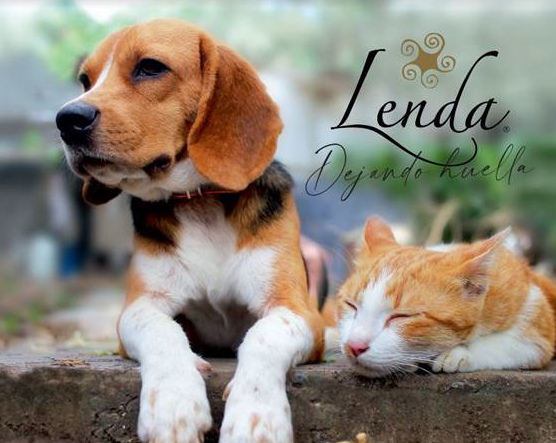 Trends
Trends
3+ MIN
11/08/2021
Lenda - Leaving an impact on Pet Food
There are many brands of food, toys and accessories for pets that are launched on the market daily, but entering a booming sector is not enough to succeed, differentiation is the key to being able to compete. Lenda, based in Galicia (Spain) took its first steps in 2016 and, less than 5 years later, is a benchmark brand in the natural food market for dogs and cats in Spain, being at the top of the rankings of brands that are highly valued by their dog, cat and, by default, human customers. In 2020, Lenda's growth was 40%, highlighting the 144% increase in the largest chain specialized in pets in the country. In addition, since 2019 Lenda jumped into the international market, currently being present in 21 countries worldwide. Lenda Pet Food has 5 different ranges, thus covering the needs of pets and the market. All this with the best quality at the best price, the biggest 'claim' of the brand. The Lenda range is its flagship, a product made with 100% natural ingredients suitable for human consumption, which falls within the so-called 'Super Premium' brands. Thanks to its packages of medicinal herbs, chondroprotectors, MSM ..., Lenda not only takes care of the diet of your dog or cat, but also cares about their intestinal, joint and immune health, preventing and extending the life of pets. It should be noted Lenda VET Nature, a range that the Galician company has launched to complete its offer and give a twist to what already exists on the market. Sold solely and exclusively in veterinary clinics, since it requires a prescription, Lenda VET Nature is made with natural ingredients and does not use preservatives or chemically synthesized dyes. Its 7 references cover 16 of the 20 nutritional objectives and its novelty is that they not only deal with the pathology of the pet, but also add bio-functional nuclei (prebiotics and probiotics), functional and packs of medicinal herbs that deal with of the animal's diet, its joint and gastrointestinal health. To complete these two ranges, Lenda offers a Premium range, L-Unico, also made with natural ingredients and with a high percentage of meats. Once again, recipes enriched with medicinal herbs. Finally, SuperPepe comes to cover the Premium and Economy range, to complete a portfolio of food for dogs and cats that covers all the needs of the market. In addition, Lenda is a committed company that strives to make its mark and contribute to a slightly better world. For this reason, the recipes are made with local products to reduce the carbon footprint, it is renovating all its packaging so that they are all recyclable and the merchandising is "ECOfriendly". The company's social commitment goes through supporting associations and animal protectors, has a Social Responsibility plan, supports minority athletes and collaborates with the UNHCR association, in addition to having a Labor Equality Plan. In short, in a short time Lenda has become a benchmark in the sector, thus taking care of those who take care of us, our pets. And you, what kind of footprint do you want to leave on the world? By: Lenda
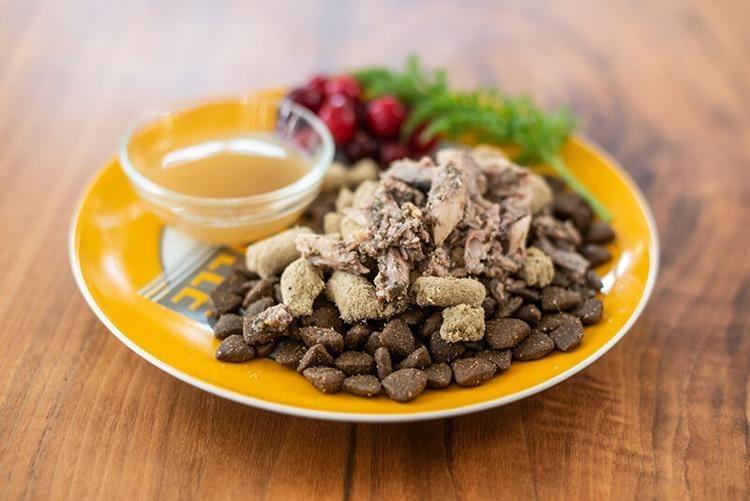 Market Information
Market Information
4+ MIN
09/08/2021
How Pet Stores can increase their food sales
Pet owners who live a healthy, active lifestyle understand the importance of the food they choose for themselves, and they are applying the same or even greater level of care when choosing foods for their companions. This is partly driven by a clean-eating mindset and concerns for the potential negative impact some additives may have on the health of our pets. Elements like high-quality protein, life stage and breed-specific formulas, and superfood ingredients have proven to be highly important in the natural category. But even more influential are the health benefits tied to them, such as heart health, energy, weight management and gastrointestinal health. Consumers of natural products expect the same solutions as conventional products, but with the added confidence that what they are putting into their pet's bowl really is the best choice for their long-term health. We encourage retailers to consider an experiential-marketing approach to merchandising product sets with a large assortment of formats, consistent with what all of the data tells us that today's consumer is looking for. Nulo's Mix-It Meals™ program, for example, allows for highly engaging Planograms that contain elements like high-meat kibble, freeze-dried raw, bone broths and meaty pouches—allowing pet parents to create 'dishes' such as Duck kibble with Freeze-Dried Lamb & Raspberries, hydrated with grass-fed Beef Bone Broth and topped with Wild Mackerel and Mussels. Imagine shoppers' delight when they realize they can customize their pet's meal with natural toppers in seconds on a budget that doesn't break the bank. We've seen incredible basket-build and productivity lifts in sets where we've activated our Mix-It Meal™ program. The average consumer does not realize they 'need' the other elements besides kibble. It's up to us to inspire them with a simple program that includes natural products—wrapped in a well-merchandised in-store experience. We recently launched our FreeStyle™ Bone Broths in larger 20-fl.-oz. resealable pouches in three wholesome formulas—Hearty Beef, Classic Turkey and Home-Style Chicken. Our bone broths are 100% natural and kettle-cooked for up to 10 hours in small batches in a facility that also produces bone broths for humans. Consumers were first introduced to this product line through our single-serve packets, which are perfectly portioned for topping a meal. Our larger packaging option gives pet owners the ability to customize serving sizes and receive an even better value for these savory broths, which have become a pantry staple for their pets' meals. Additionally, we are excited to share that Nulo Hydrate™, a line of functional liquid water enhancers for dogs, has been expanded to include formulas for cats. Our goal with this product line is to provide a new wellness solution by focusing on the water bowl. Encouraging pets to drink more water can have many health benefits, and just a squeeze our water enhancers deliver exceptional flavor plus a nutritional boost with B-vitamins, electrolytes, and amino acids such as taurine and DL-methionine. Nulo's Hydrate™ line includes several natural meat-based flavors in a shelf-stable format that doesn't require refrigeration. A key element of our product development strategy is fostering a culture of innovation that involves our key retail partners. Demand planning begins with an understanding of existing gaps in the marketplace and finding creative solutions that not only deliver productive SKUs, but also help drive new traffic into their stores. As retailers engage with our company, we focus on key priorities and try to bring ideas together in a collaborative way. Natural products are no exception to this process—but they challenge us to think outside the box for raw material sourcing, manufacturing capabilities and packaging design that will be differentiated in the market and add meaningful value to our product portfolio. It is important to keep an open mind when merchandising natural foods, because they often won't fit into traditional food categories. For example, Nulo's Freeze-Dried Raw recipes were designed to have small, nutritionally complete pieces that are easy to feed alone, mix with other foods, or even as a treat. The ability to incorporate freeze-dried foods at all levels of feeding allows the products to be merchandised virtually anywhere in the store. Adding clip-strips and endcaps within the primary kibble aisles can help to suggest a mixed feeding approach, while clip strips in sections like outdoor pet gear (backpacks, collapsible bowls, etc.) can suggest an on-the-go use for those getting ready to travel or embark on an outdoor adventure. For those owners who aren't ready to commit to a diet overhaul, having small packages placed around the store can be an intriguing invitation to try it. Finally, impulse-buy merchandizing near the front of the store is an easy conversation piece at the point of sale and a great way to increase exposure for all customers, including those who may have stopped in for natural treats or toppers. Natural as a category has evolved from being heavily ingredient-focused to a much broader scope that considers how a food is processed. Raw-frozen, fresh-refrigerated, and freeze-dried foods are leaning into innovative technology and packaging to deliver nutrition to pets in new ways without the need to rely on traditional preservatives. This is a niche where technology and 'natural' intersect and has potential to fuel exciting pet food and treat innovations for the next several years. Packaged facts forecasts U.S. retail sales of natural pet food through all channels to surpass $12.2 billion by 2022, accounting for about a third of the $36 billion market of U.S. pet food and treat sales. Natural pet products clearly have a strong foothold, and we find ourselves on the frontlines of innovation to drive this category forward. Author: Heather Acuff, Ph.D., Director of Research & Development, Nulo. Source: All Pet Food
 Dogs
Dogs
5+ MIN
05/08/2021
Mycotoxins in pet food: Risks for dogs
The mycotoxin threat is not new to the pet industry. However, never before has it been such a prevalent and widespread concern. More recently, its real danger in pet food became apparent when more than 70 dogs died and another 80 became ill in the United States, due to aflatoxin contamination. This forced a massive recall of food products, after contamination was determined to be the source of the problem, confirmed by the US Food and Drug Administration (FDA) in 2021. Although the manufacturers of these foods implement strict quality and safety measures when selecting their ingredients - and even with precise analysis to detect the presence of mycotoxins in raw materials and in the finished product - it can be difficult to know precisely what could be hidden in these seemingly safe components. When industry attempts to accurately detect mycotoxins, problems can arise in grain processing, screening tests, synergistic interactions, or storage conditions. An alarming event such as this recent aflatoxin contamination confirms that grain and feed producers need to know which mycotoxins they are most likely to encounter, what threats they pose, and how best to address them. What aflatoxins stands for? Mycotoxins are substances produced by molds or fungi. While aflatoxins, in particular, are metabolites of green-yellow molds called Aspergillus flavus, which comprises four different strains: B1, B2, G1 and G2. The most toxic of these is aflatoxin B1, which is carcinogenic and can have adverse effects on liver function and immune response. Where do aflatoxins grow? Aspergillus flavus can grow in a temperature range of 12.2 to 47.8 ° C, with 37 ° C being the optimum temperature for its growth. For its development a low humidity is required, being favorable from 13 to 13.2%. Aflatoxins are generally found in corn, cottonseed, groundnut (or groundnut), almonds, and by-products derived from these. Thus, corn is one of the ingredients in dog food that represents a greater risk for them. A recent report from the Alltech Summer Harvest Survey, conducted in the United States, indicates that changes in the weather patterns in that country have generated an unusual situation in which higher than normal levels of aflatoxins in corn samples (other than normal high-risk areas). That currently represents a number of new challenges for pet food manufacturers, which will need to take these into account when selecting their ingredients. Aspergillus flavus can infest the corn plant through pollination of silk (affecting the grain) and through its leaves and stems damaged by insects and by meteorological phenomena (such as strong winds or hailstorms). The infestation can occur extensively in the field, but most often affects those areas where the plants are subjected to greater stress. It is difficult to detect aflatoxins in corn kernels, as they could even be present in the kernels of a shipment. So when testing received ingredients for mycotoxins, it is necessary to take multiple samples combined to accurately identify potential hazards. Stored corn should be dried to a humidity level below 14%, and mold growth or insect damage should be closely monitored. A good practice is to check the grain that enters and / or leaves the warehouse to remove those that are damaged and broken (which can be a main source not only of aflatoxins but also of other mycotoxins). In addition to the threat of unprocessed whole grains, feed manufacturers must take into account the increased risk posed by the high levels of mycotoxins that can be found in cereals made from products such as bran, which are often included in pet food products. Mycotoxins signs in dogs Although no person who has a pet would like or imagine the damage that mycotoxins could cause them, it is important that they know their signs to take quick action when necessary. One of the main indicators that a dog has ingested a food contaminated by mycotoxins is liver failure, which can be caused by either acute or chronic exposure. Other common signs include: Vomiting and loss of appetite Weightloss Lethargy Diarrhea Weak immune system Respiratory problems Shaking Heart palpitations Jaundice Aflatoxins are one of the groups of mycotoxins considered to be one of the most powerful known carcinogens. Long-term exposure can lead to death, causing irreparable pain to the pet's family. If your dog exhibits any of those clinical signs, then it is necessary to take him to your vet as soon as possible. Also, it is recommended to take a picture of your food and write down the batch number of the product for reference. What are the global regulations for aflatoxins? The FDA regulates aflatoxin levels in feed and feed ingredients. The current regulatory limit for companion animals (dogs, cats, rabbits, etc.) is 20 ppb. This represents a significant challenge, since in 2020 not only did the geographic areas in which aflatoxins grow in the United States, but their impact on total corn production was also greater. Thus, with a decreased yield, larger quantities of corn need to be transported around the country, which increases the potential risk of corn in dog food. Mitigating mycotoxins threat To detect, manage and mitigate the threat of mycotoxins in the manufacture of balanced food, and to prevent their negative impact on pets; Manufacturers are advised to adopt a comprehensive mycotoxin management program (so that risks can be determined and controlled at each phase of the supply chain). State-of-the-art technologies for mycotoxin detection - such as the Alltech 37 + ® Assay Test or the Alltech® RAPIREAD ™ Real-Time Assay System - can help identify mycotoxin risk and enable the necessary measures to be taken control. Pet owners are encouraged, whenever possible, to ask the manufacturer for information on their mycotoxin testing program and mitigation plan. With a comprehensive approach to mycotoxin management, the pet food industry can prevent a repeat of its recent recall. In this way, families can rest assured that they won't have to face the loss of their beloved pet. For more information on this topic, contact the Alltech representative in your country or visit Author: Dr. Max Hawkins - Alltech Source: All Pet Food
 Market Information
Market Information
4+ MIN
04/08/2021
The growth of the online Pet Food market in Latin America
Only-one retailers already had a strong presence, but ever since the COVID-19 pandemic started traditional stores found the need to build reliable e-commerce platforms. Retailers such as Amazon, Walmart and Chewy are big in the US market, but the Latin American market has another strong contender: Mercado Libre. Preferences of Latin American consumers Mercado Libre is an Argentinian e-commerce company with presence in Argentina, Brazil, Chile, Colombia, Mexico, Panama, Peru, Uruguay and more. With 378 million registered users in 2020Mercado Libre is the most popular e-commerce website in the region. The platform supports both C2C (customer to customer) and B2C (business to customer) interactions, allowing users to list new and second-hand products, as well as small and medium-sized businesses to open a shop on the website. Brands such as Australian Moss, Hills, Instinct, Mutt and Pedigree have official shops in Mercado Libre, making it easy and convenient for their consumers to access their products. Back in 2019, Mercado Libre conducted an analysis of user behaviour in Argentina, Brazil, Chile, Colombia, Mexico and Uruguay. They found that 45% of the demand for pet food came from millennials, especially in Mexico and Colombia, with 52% and 58%, respectively. They reported that during the first six months of that year they noticed an increase in the consumption of pet food on the website. They also noted that there are differences among the countries on the prefered grammage. For example, on average, Uruguay users usually purchase pet food bags of over 8 kilograms, while Chilean consumers tend to buy 1 or 2 kg bags. The Campi case Campi is a company that decided to incorporate the feed division as an alternative to optimize its production costs and improve its market share. The company is currently present in 17 Mexican states and has plans to expand into the Caribbean and Central America. What makes Campi special? Campi, which is dedicated to the production of pet food and has developed its own line of food for dogs and cats. However, they do not have a physical store like other brands, which have developed their products and opened stores to sell them. They have relied on e-commerce and their main point of sale is Amazon and, in some cities there are certain stores that sell their products, such as supermarkets and self-service stores. Just like Campi, many other companies in the petfood sector are beginning to enter the world's markets through e-commerce, it is a way to make themselves known, especially making use of platforms already recognized and trusted by thousands of users such as Amazon and Mercado Libre. What can we expect from the near future? The Latin American pet food market has amazing potential. Global trends, like products with natural or holistic ingredients, or premium alternatives, are permeating the market. Another trend is a growing awareness of pet adoption, an important factor considering the region has a high number of street dogs and cats. In terms of volume, the Latin American market is currently nearly the size of the US market, with more than 7 million tons in 2021. Its growth is expected to be steady. Not only are the consumers open to investing more in the wellbeing of their pets, the region is self-sufficient in the production of raw materials -like corn- commonly used in the production of pet food In Mexico, according to Triplethree estimates, premium pet food e-commerce experienced a growth of over 100% during 2020, compared to 2019. The pandemic restrictions definitely played a role in this, but the shift had already started before COVID-19. Even though consumers are no longer under lockdown and have the opportunity to purchase at traditional shops, a lot of them are now used to online shopping, which is fast and convenient. A tactic that can be seen is that some online retailers, such as Amazon and Petco, offer a special discount price for online purchases, a very appealing strategy. Undoubtedly a good step for any new product in the petfood industry is through e-commerce, and a good marketing strategy. It is no longer necessary to have physical stores, with e-commerce you can reach any part of the world. It has already been proven that Latin America offers a great opportunity for growth and investments. Consumers and brands of this region are adapting to global trends and online sales are one of the clearest examples. The Latin American market is waiting for the arrival of new products through the online market, don't be left out. E-commerce is not going anywhere, just getting stronger. By: Diana Mercado
 Formulation
Formulation
9+ MIN
04/08/2021
Por Luis Miguel Gómez Osorio
The most important nutrient for our pets: Water
Excess consumption of water may also be indicating some pathology or collateral effects of some medication as part of a treatment, among other causes. There are also some dogs and cats that are not good 'water drinkers' and their consumption should be encouraged to avoid severe dehydration that ends the life of the pet. This article summarizes the importance of water for the physiological functions of dogs and cats and its contribution to homeostasis, the main causes that alter its consumption, quantities that should be supplied according to the physiological state and activity level and some recommendations for stimulate the consumption of this important nutrient. Definition Chemically, water is the combination of hydrogen and oxygen, which are united at a rate of 2 hydrogen atoms and one oxygen (H2O). Water is vital for life and is considered the most important nutrient of all (1). Water is the most abundant component in the animal's body, varying between 40 to 80% of its total body weight. The percentage of water varies between species, condition and age. Generally, lean body mass contains between 70-80% water and 20-25% protein, while adipose tissue contains 10-15% water and 75-80% fat. The younger the animals contain more body water and the overweight and / or obese animals have less water in their body compared to non-overweight animals. Once the animals mature, they require proportionally less water per unit of body weight and therefore have a lower urinary water loss. Furthermore, adults have less surface area per unit of body weight resulting in less evaporation from the skin. Function Water is an essential nutrient, but perhaps the least discussed with respect to the other dietary requirements such as protein, energy, vitamins, etc. Contradictorily, it is the nutrient that is required in the greatest quantity (Figure 1). Water is offered daily separately from food and is also included in it, as we must not forget that food contains water and is not 100% dry matter. In addition, when water is supplied in sufficient quantity, healthy cats and dogs can self-regulate their consumption and satisfy their nutritional needs. However, its contribution as a nutrient to the total diet is largely ignored, unaware that it is a vital ingredient for the functioning of body cells and body fluid. The functions of water in pets are quite a few, but among the most important, it can be mentioned: it is a solvent for most extra and intracellular chemical processes, the main component of tissues and fluids, the main component of blood, a facilitator for digestion and absorption of nutrients, thermoregulation, excretion of waste in urine and feces, moistening of the lungs, protects and lubricates internal organs such as joints and supports the functioning of the nervous system. Figure 1. The six basic nutrients. Carbohydrates, fats and proteins are the nutrients from which energy comes, but they also serve as structural components. Kg: kilograms, d: day, mcg: micrograms, mg: milligrams, EAA: essential amino acids. Regulation of water consumption in dogs and cats The loss of water in both dogs and cats occurs mainly as a function of respiration, urine production and feces. While water is constantly being lost throughout the day, access to water is periodic. The sensation of thirst is correlated with the body water content and the osmolality (amount of particles dissolved in a liquid) of the plasma, although this sensation cannot be stimulated unless there is a slight degree of dehydration. How much water should a dog drink per day? A simple rule that we could easily memorize would be one ounce per pound of the dog's weight. That is, almost 30 mL of water for almost 454 g of the animal's weight. A dog weighing 4.5 kg should drink 300 mL of water per day (4). However, this may vary with the physiological state, activity level or the presence of some pathologies. Also, dogs that consume kibbles drink more water than those that include canned or semi-moist foods in their diet. Although there are water requirements for dogs and cats, to date the optimal volume of water consumption or the impact that hydration may have on the health of our pets is not known with a high level of precision. Additionally, all nutritional recommendations for pet food declare that there must always be fresh water available at will, seeking a state of eu-hydration (hydration in optimal balance). Daily water consumption requirements have traditionally been reported in mL / kg (milliliters per kilogram) of body weight (PC), mL / kg of dry matter consumed and the relationship between water and calorie consumption measured as mL / kcal (kilocalories ) of metabolizable energy (ME) consumed. All these methods rely on water from different sources such as food moisture, direct water consumption and metabolic water. In general, the water-calorie intake rate for healthy dogs has been estimated at 1.0: 1.0 mL water: kcal of ME. However, this metric can change dramatically over time (weeks to months) with different levels of physical activity such as exercise or work while maintaining the same CP. However, some exceptions have been reported for dogs exercising long-distance runs in extremely cold climates. As a general rule, a sport dog, its water requirements are 2.4: 1.0 mL water: kcal of ME. It has recently been reported in humans that small changes in body hydration status (less than 2%) impact cognitive status, mood and performance during exercise. It has been speculated that, in working dogs, mild dehydration may affect tasks such as search and rescue of people, detection of narcotics and explosives, hunting and sports, and biomedical detection services including COVID19-positive patients (6). There is an imminent need to know much better the amount of water that can potentiate the level of hydration for pets and working dogs in different stages such as rest and work-related tasks, ensuring optimal health and performance. Even when the activity is between little and moderate, the hydration status is not the same during the day due to the routines of dogs and cats, sometimes generating states of hypohydration with respective increases in serum and urinary osmolality just from minutes to hours. Some diseases have been associated with dehydration states such as hyperglycemia, diabetes progression, high risk of chronic kidney disease, recurrence of kidney stones, and possibly a high contribution to hypertension and lower urinary tract disease. How much water should a cat drink per day? Compared to dogs, cats drink less water. In general, an adult cat consumes between 150 mL and 300 mL ounces of water per day, depending on size, activity level, type of food, and other factors such as health and environmental temperature. If the cat is fed kibble, its water consumption will be closer to 300 mL per day and if it is fed canned food, it will be closer to 150 mL per day. Cats may be drinking too much water, which can be detected by a greater number of visits per day to the litter box or because the cat is passing through the fountain several times a day or playing with it already empty. The causes that make the cat drink too much water are the same as dogs, however, the most common are: kidney disease, diabetes, cancer and hyperthyroidism. If you notice a large amount of urine in the litter box or even see urine in the water container, you should immediately consult your veterinarian. How to know if the pet is consuming enough water? Checking the pet's hydration status is very important, which is evidenced by a good elasticity of the skin, (if the skin is pulled it immediately returns to its place), pink and moist gums, bright eyes and good levels of energy. The urine of a properly hydrated dog or cat is normally odorless and pale yellow or clear. A dehydrated cat or dog is lethargic, their eyes may be sunken or look sad, their saliva is thick, their gums are dark and dry, and their skin elasticity is reduced. Urine has a strong, dark yellow odor. However, in dogs and cats with kidney disease the urine may be light yellow. Water quality Salinity, nitrates and nitrites, toxic organic and inorganic chemicals, and microbial contamination can affect water quality. Routine measurements of the water and the concentration of all its dissolved components (known as TDS or total dissolved solids) should be carried out. Salinity (salt content in water) is an indicator of its ionic capacity and is closely related to TDS. The water must contain less than 5,000 parts per million (ppm) or mg / L of TDS. However, this data has been extrapolated from birds and pigs and it is generally accepted that the water that our pets should drink should not be greater than 500 ppm, which has been taken from humans (US EPA, 1976). Other aspects of water such as hardness (sum of calcium and magnesium salts in relation to calcium carbonate) have little effect on the well-being of the pet. High levels of Mg in drinking water in cats are closely related to cases of urolithiasis, however, the amount consumed in water is negligible compared to that ingested through food (up to 10,000 times the difference). Cats susceptible to urolithiasis may benefit from drinking distilled water more than water that has been softened with sodium chloride. Why is your dog thirstier than usual? Dogs should normally consume 13.3 mL of water for every kg of live weight. Puppies and lactating females can consume more water. Several things can affect the amount of water dogs drink, including weather and activity level. However, if your pet drinks a larger amount of water without explanation, it may be indicative of a health problem. Among the most frequent causes of increased water consumption can be mentioned. Dehydration: hot days, days of high activity, illness and infection, can cause dehydration in dogs and activate the active search for water to drink. In addition to signs of being thirsty, the pet may also show other signs such as lethargy, dry tongue and gums, and thick saliva. Dehydration can quickly become life threatening and if severe dehydration is suspected the dog should be taken to the vet immediately. However, if it is moderate dehydration, a teaspoon of water can be given in small breed dogs and 2 teaspoons in large breed dogs every 10 minutes for a minimum of 6 hours. Do not allow the dog to have access to large amounts of water at will when dehydrated, because drinking large amounts can cause vomiting. Illness: Several pathologies can cause excessive thirst or dehydration, including diabetes, Cushing's syndrome, cancer, diarrhea, fever, infection, kidney disease, liver disease, among others. Sometimes it is not the pathology itself that causes dehydration but the medications used to treat them. The veterinarian should be inquired about the adverse effects of the medications and if they cause dehydration, lower doses could be tried. Among the medications that can generate excessive thirst in dogs can be mentioned: prednisone, furosemide, phenobarbital, etc. Diet: A dry diet, which corresponds to a food between 5-10% humidity, can cause thirst and slight dehydration in the animal. High sodium content can trigger the dog to drink more water. High amounts of salt can be poisonous to dogs and the most characteristic signs of this can be tremors, diarrhea, depression and vomiting. Some sources of fiber used in food may be altering the amount of water consumed in dogs and cats. How to stimulate water consumption in dogs and cats Some cats and dogs are not good water drinkers even if all the water is needed. Cats in particular are very notorious for this condition. For this reason, these suggestions should be taken into account, which can help stimulate the consumption of water in both dogs and cats and thus avoid dehydration. For cats: 1. Try to have a water source. Some cats do not like water in a container and instead prefer moving water. In general for cats and dogs: 1. Serve the water at room temperature and not cold. 2. Wash the fountain frequently and make sure the water is fresh and clean daily. 3. Change the location of the fountain, some cats are very particular and like to have the fountain near their bed or in the resting area or where the cat does not walk frequently. Do not put the waterer near the litter box. 4. Leave several drinking fountains in different areas so that the animals can drink calmly. 5. Flavor the water with small amounts of tuna juice, bone or chicken broth, or even liver. Make sure to wash the containers of the water that were flavored well. 6. Treat your pet to a snack after he drinks water. 7. Add water to food, or supplement pet with semi-moist food. 8. Offer dogs flavored popsicles. Final Recommendations It is relatively easy to tell that your pet is thirsty or has an unusual change in water consumption by the amount of water served in his cup. Therefore, the water bowl should be filled routinely at the same time of day to notice any changes. Fill it to the same level every day and pay attention to how much you take and how much you leave in the drinker each day. Water is critical to your pet's health and well-being, never restrain your dog from the water. If you are concerned that your dog is drinking too much water, or not enough, do not hesitate and consult your trusted veterinarian. Source: All Pet Food
 Market Information
Market Information
2+ MIN
04/08/2021
AFB appoints Brooke Eiler as Vice President, Global Marketing
First, people love their pets. And those pets enjoy a variety of pet foods made by dedicated, high quality, highly-regulated pet food companies. This is actually not so different from elsewhere in the world. I am proud to be part of the pet world, and my time working with pet food companies in this region has only increased my respect for our industry. Second, in the words of a Spanish customer, my English has improved. This might seem strange at first since my native language is English; non-native English speakers will understand. I've learned to appreciate the diversity in native languages across the region. This appreciation has led me to be more sensitive to body language, more thoughtful about suitable vocabulary, and more attentive to understanding. In a world that is increasingly diverse and global, excellent communication is a critical part of personal and professional success. Many thanks to my Spanish friend for pointing it out! Third, Europe is a challenging and exciting market for pet food companies. According to the World Atlas, there are forty-four countries in Europe. That's forty-four different cultures, histories, pet trends, retailers, customs, and laws as well as lots of different languages. And that doesn't include the highly diverse Middle Eastern and African regions also served by AFB and pet food companies. The abundance of diversity is one of the things that makes this region so incredible yet so complex. One look at a pet food label with five languages gives a sense of the complexity – especially when you know the same brand probably has multiple versions with additional, different languages. The companies who are successful here have the skills and expertise to be successful anywhere in the world. As I depart the Netherlands, I am especially pleased to welcome Andries Smit to the AFB European team. Andries' over two decades of global experience in specialty B2B ingredients will be a huge benefit for AFB and our customers. A constant drive to add value to customer's products and brands has been a red thread throughout his career. He will continue to lead the commercial team in delivering the best palatant solutions through partnership with customers and a continued focus on industry-leading customer satisfaction. To meet Andries, contact your AFB account manager, or reach out to him. Fortunately, in my new role as Vice President, Global Marketing, all of the relationships and insights built in my years at AFB will continue to bear fruit. Our Global Marketing team has a two-fold mission of building customer value and building company value, and this only happens with deep understanding of the needs of the industry, its companies, and its customers. So, my European friends, this is not goodbye… this is more of a 'see you soon'. Let's not become strangers! If you have ideas, want to network, or would like to share a cup of coffee, you can continue to reach me. By: AFB International
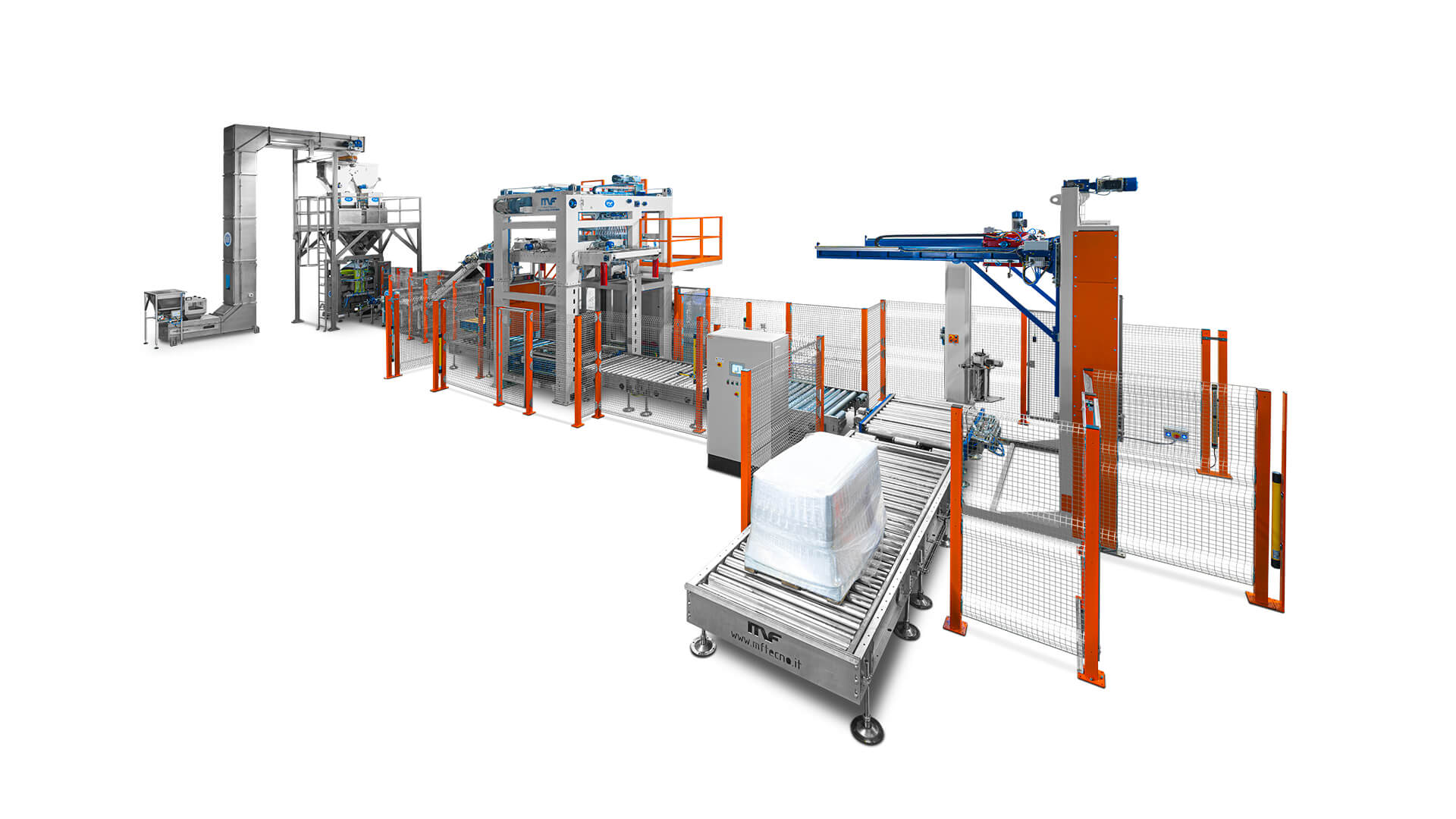 Packaging
Packaging
2+ MIN
03/08/2021
Pet Food Packaging: all the solutions
Dry Pet Food packaging can be carried out using: an open mouth bagging machine a vertical packaging machine a big bag packaging machine Pet food packaging machines: which one to choose? The ideal packaging machine depends on: the bag type the bag size the production requirements (capacity and speed) Pet Food bagging machine for preformed bags: Automatic open-mouth bagging machines are used for packaging Pet Food in medium or large bags. The IABA series is designed for medium production capacities with bags of 5 to 30 kg, and consists of: IABA 600 S: up to 10 BPM IABA 800 S: up to 15 BPM UNIVERSAL 1200: up to 20 BPM. Ideal for medium to high production capacities. featuring high packaging speeds and a wide range of packable formats. IABA 600 D: up to 30 BPM. Automatic bagging machine with double filling station. Ideal for high production capacities. These bagging machines can fill flat or folding preformed bags The MF POUCH 3000 bagging machine is used for: High production capacities High levels of flexibility in terms of bag type and size Small sizes (from 300 g to 5 kg) The MF POUCH 3000 is recommended for those with particular packaging aesthetic requirements. The bags can be of different types, with various closures, and can be graphically customised. Semi-automatic Big Bag bagging machine The semi-automatic big bag bagging machine is used for sizes ranging from 500 to 2000 kg. It can be equipped with a net weight or gross weight scale. The net weight MF Big Bag PN Pet Food bagging machine is ideal for medium to high production capacities. The gross weight MF Big Bag PL bagging machine is ideal for medium production capacities. Complete Pet Food packaging systems In many cases, the market demands aren't limited to a packaging system alone. MF TECNO offers comprehensive Pet Food packaging systems. Our product range includes conveyor systems, scales, bagging machines, palletisers, and wrapping machines. The shrinkwrappers and boxing machines fall within the category of secondary packaging systems. The following image shows a complete 20 BPM system with 10 kg bags, consisting of: a Tipping Bucket Elevator an MF 54 vertical packaging machine an MF PRC 1000 6-Column Palletiser an MF WRAP 35 rotating platform wrapping machine Pet Food Production Not only packaging, but pet food production as well. Our group company MIAL has been building animal feed and pet food extrusion plants for over 50 years. Source: MF TECNO
 Trends
Trends
3+ MIN
02/08/2021
IndiePet and the Pet Sustainability Coalition Partner to ignite the independent retailer community
With the ever - increasing consumer demand for sustainable products coupled with an increased desire for purpose at work from employees, retailers of all sizes and locations have an opportunity to grow stakeholder engagement by incorporating environmental and social impact into their business strategy. To turn this opportunity into action, the Pet Sustainability Coalition (PSC) and IndiePet are announcing a new partnership that will provide education, membership access and implementation tools to accelerate sustainability in the independent pet channel. Whether it's an employee-led sustainability team, equipping its merchandising team to identify authentic sustainable products that differentiate the shopping experience, or saving money through efficiency improvements in-store, retailers have a plethora of options to capitalize on the rapidly advancing sustainability movement that's alive and well in the pet industry. Through this partnership, PSC and IndiePet are coming together to ensure retailers have the knowledge and support they need to identify and implement the sustainable opportunities that will best move their business forward, serve their community and drive real impact. 'Independent pet retailers are known for our deep connections to our communities and that includes being responsible corporate citizens. We also have tremendous passion for both social and environmental sustainability, but often we don't know where to start or we just can't give as much time to this portion of our business as we would like. PSC and iIndiePet are committed to building a unified approach to sustainability that fits the IndiePet channel and that makes it easy for independent retailers to customize a sustainability plan that fits their business and their community' said AL Puntillo, President of the Independent and Neighborhood Pet Retail Association (IndiePet). The three primary goals of the PSC + IndiePet partnership are education, membership access, and retailer tools so that independent retailers can be part of the sustainability movement building in the pet industry: Education: Sustainability topics advance quickly and retailers are short on time. PSC will work with IndiePet to offer credible information in digestible sizes to inform the retailer community. Topics ranging from sustainable proteins and packaging to employee engagement techniques are on the top of the list. Find content from PSC in the IndiePet monthly newsletter and keep a lookout for more in-depth education offerings soon! Membership Access: Retailers play a critical role in the sustainability movement but less than 10% of PSCs members are retailers. PSC and IndiePet both offer significant discounts to their existing members to join both organizations. Retailer Tools: PSC is offering a free sustainability assessment report to all interested IndiePet Members. Retailers can identify low hanging fruit and learn how they compare to other businesses of similar size and type when it comes to environmental and social impact. Other member tools include retail case studies like All The Best Pet Care that used PSC's Employee Survey to evaluate employee interest in sustainability and launch a successful employee-led sustainability team. Catch PSC and IndiePet together at SuperZoo at the inaugural IndiePet meeting on Aug 16th from 4:00 - 5:30pm at the Mandalay Bay Convention Center in Las Vegas. To RSVP visit To learn more about this partnership or to get started with a PSC Membership email. to reach PSC to reach IndiePet Author: Caitlyn Bolton Source: Pet Sustainability Coalition
 Market Information
Market Information
2+ MIN
29/07/2021
Diana Pet Food extends its palatability measurements capabilities in North America
Symrise's business unit Diana Pet Food is expanding its palatability measurement services for cat food in North America within their expert measurement center, Panelis. Panelis currently offers Versus and Kinetics testing methodologies for dry cat food, as well as monadic tests for cat treats. Following market trends and customer expectations, the company decided to build two additional cat panels of 40 cats each. One of the panels, dedicated to dry food and treats, will qualify for Liking tests on top of Versus tests for kibbles, allowing to focus on the animals' preference and also on enjoyment during mealtime. The other panel will dedicate itself to wet food palatability testing. The design of the additional building, completed in early June 2021, provides an optimal environment to ensure best-in-class cat's well-being while using innovative techniques for pet food performance measurement. The new panel members, a mix of kittens adopted from the local humane society and pure breed cats, are now discovering their new home. The pets are currently going through their qualification phase which forms the last step before these kittens become official Panelis tasters. About Diana Pet Food and Panelis Diana Pet Food is the global leader and pioneer of high value solutions improving pets' well-being and owners' satisfaction. The entity provides multiple products and services improving pet food palatability, pet health, and pet food protection. Diana Pet Food is present on five continents with 1090 employees, 18 industrial sites, 18 sales offices and 4 expert measurement centers with over 1000 cats and dogs. With Panelis, the company provides its clients with studies on cats and dogs' feeding behaviors and preferences. Panelis also delivers insights about owners' perception of their pets' feeding experience. Scientific excellence and a strong sense of ethics are two of Panelis's undisputable assets. The center's teams ensure that all studies are reliable and objective, being based on repeatable and controlled testing methodologies. Pet-friendly and quality driven, Panelis has conceived protocols that respect product characteristics and the natural and specific feeding rhythms of cats and dogs. Pets are carefully chosen and gently trained to become tasting experts. Since accurate answers can only be obtained from healthy, happy, and stress-free pets, Panelis has created the most pet-friendly environment for all its little furry gourmets! Diana Pet Food is part of the Symrise's Flavor & Nutrition segment. Symrise is a global supplier of fragrances, flavors, food, nutrition and cosmetic ingredients. For more information visit Panelis webpage Source: Diana Pet Food
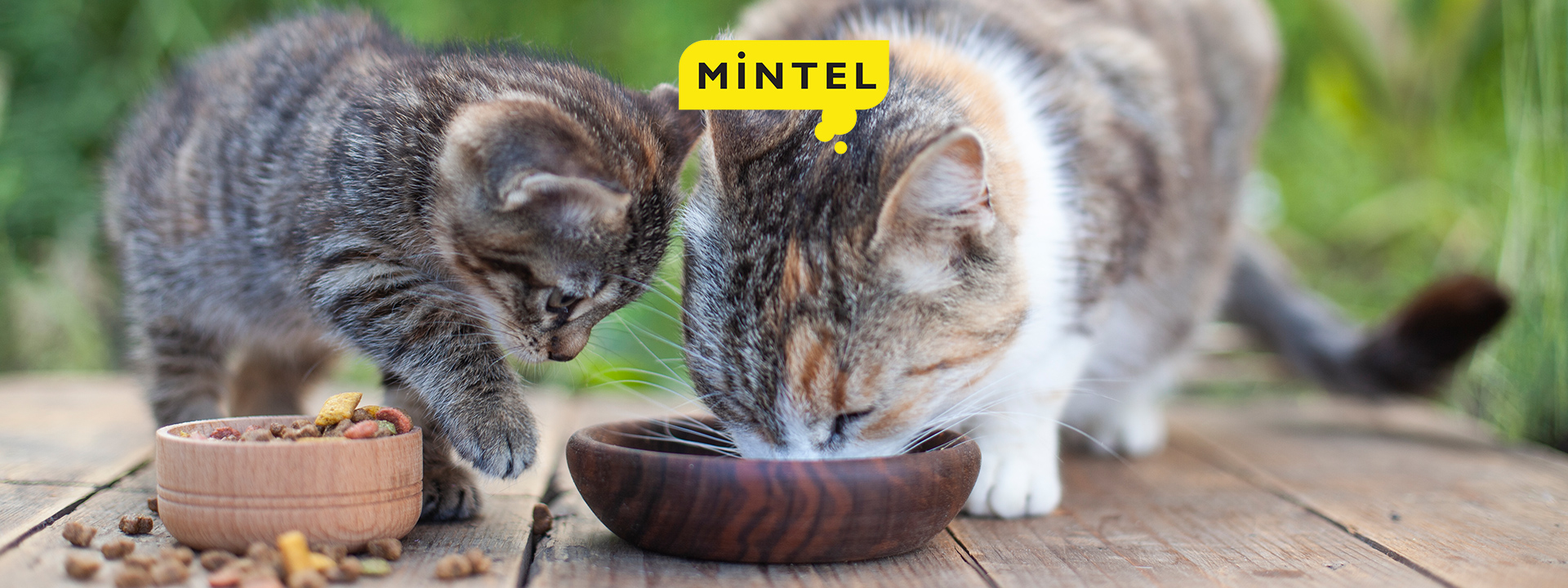 Trends
Trends
1+ MIN
23/07/2021
The consumer and product trends which will impact the pet food market in 2021 and in the years to come
Pet owners are also looking for functional benefits to help reduce the risk of their pets developing lifestyle diseases. Pet food safety remains a concern for owners, and brands are responding by highlighting ingredient quality, and reducing unwanted additives. This article explores how the pet food world will evolve in the near future and beyond by identifying major themes that will unlock opportunities that matter for the industry. Read more about this article here. Fuente: Diana Pet Food
 Market Information
Market Information
1+ MIN
22/07/2021
AFIA Now accepting Nominations for Friend of Pet Food Award
'As the science around animal nutrition evolves, we depend on talented individuals to help us research and think bigger about how we can deliver safe, innovative products to keep our pets fed sustainably into the future,' said Louise Calderwood, AFIA's director of regulatory affairs. 'The AFIA Friend of Pet Food Award is a great opportunity to nominate someone within your company who is going the extra mile for the betterment of pet nutrition and the industry.' An ideal nominee will be currently employed and active in the pet food industry or an associated area, such as new product development, transportation, regulatory, academia, media or promotion. There is no restriction by company or industry affiliation, or the function performed by the nominee. The award winner will be invited to attend the 2022 AFIA Pet Food Conference which is being held in conjunction with the International Production & Processing Expo in Atlanta, Ga., on Jan. 25-27, where they will be publicly recognized with a plaque. For more information on the award or to nominate someone, visit here. Contact Lacie Dotterweich, Communications and Social Media Manager. July 13, 2021. Source: AFIA
 Market Information
Market Information
1+ MIN
21/07/2021
Foro Mascotas Pet Food – VIRTUAL EXPO 2021
The Foro Mascotas Pet Food VIRTUAL EXPO is the main update and networking event of the pet food industry in Mexico and Latin America. A high-level international forum with conferences where topics on global trends in nutrition, sanitary regulation, processes, ingredients, formulation and evolution of the pet food market and brands, among others, will be addressed, as well as a better integration between the members of the productive chain. We are an event aimed at the pet food industry, where you will find stands offering their products, as well as rooms where simultaneous conferences are held. The commercial area will take place through virtual spaces, which will allow you to interact with customers and suppliers from your home or office. We will have: 50 commercial booths. Digital conferences. Networking. Participation of wholesale pet food marketing companies. Participation of the pet food industry. Dates: October 5 and 6, 2021 Time: 1st day: 9:00 am - 5:00 pm | 2nd day: 9:00 am - 1:00 pm Conferences: After the event, conferences will be open on demand, as well as access to the commercial area during October. Costs: • Entrance: Admission to Conferences and the Commercial Area is free. Prize Raffle: • 3 Holiday courtesies • Raffle of 2 Mini Ipads To register enter here Source: All Pet Food
 Vegetable Origin
Vegetable Origin
1+ MIN
19/07/2021
Beet Pulp and its use for Pet Nutrition
In addition to the basic functions of feeding and nourishing, functional food also promotes metabolic effects. This type of product has caught the eye of the production chain. This is the case of beet pulp, which, in addition to nutritional benefits, has phytotherapy and therapeutic role when used in pet food supplementation. It has been widely used in horse nutrition as well. Why using it? Since it is the noblest source of fiber for the pet segment, the benefits of Beet Pulp are notorious. Source of Energy The fermentable fraction of the Beet Pulp is degraded into short-chain fatty acids and used as an energy source by intestinal cells. Its exclusive composition of moderate fermentation fibers and low lignin prevents irritation of the intestinal mucosa, keeps the colon healthy, and massages the intestinal wall, thus increasing the peristaltic movement and facilitating the excretion of feces. Fibers from White Beet Pulp also act as a water and microorganism absorption structure in feces, improving consistency, and reducing fecal odor. The better consistency of feces (fecal score) makes excretion much easier, which increases the welfare of animals that consume feed with Beet Pulp. It is especially recommended for dogs and cats. By: ICC Brazil
 Market Information
Market Information
2+ MIN
16/07/2021
These are the top emerging Dog-Friendly cities for 2021
But where are they moving? According to Rover and Zillow's 'Top Emerging Dog-Friendly Cities for 2021,' Denver is the top spot to be, followed by Orlando, Fla.; Anaheim, Calif.; Charlotte, N.C.; and Birmingham, Ala. To create the list, Rover officials looked at new dog accounts on their platform, whether from dog owners new to the area or longtime residents with a newly adopted dog, and Zillow dug into cities where dog-friendly rentals and listings mentioning home features dog owners covet are on the rise. 'Denver takes the top spot, largely because of the number of new Rover accounts created, followed by Orlando and Anaheim', officials said in a statement. 'Orlando saw strong growth (4 percent) in the number of rentals listed as dog-friendly during the pandemic, and has one of the highest shares of for-sale listings mentioning dog parks. Anaheim has among the highest share of for-sale listings that feature a dog run'. A large majority of dog owners surveyed (86 percent) said dog-friendly features - things like a home with a dog door or living near a dog park - are an important factor in their moving decision, and 84 percent are willing to spend more for these features. A fenced-in outdoor space is the most-desired home feature for dog owners Rover and Zillow surveyed. 'The good news for home shoppers is that the share of listings mentioning fenced yards and outdoor spaces grew more during the pandemic than any other dog-friendly feature Zillow analyzed', officials said. 'But interested buyers should strike quickly when a home with a yard for their dog catches their eye -h omes sold 5 days faster than expected last year when the listing mentioned a fenced yard'. The full list of emerging dog-friendly cities: Denver Orlando, Fla. Anaheim, Calif. Charlotte, N.C. Birmingham, Ala. Atlanta Boston Glendale, Ariz. New Orleans Tampa, Fla. Fayetteville, N.C. Fort Worth, Texas Miami Nashville, Tenn. Saint Petersburg, Fla. 'This year, we spent an extraordinary amount of time with our pets, and many of us relied on their companionship more than ever', said Kate Jaffe, who specializes on industry trends at Rover. 'As a result, our emotional bonds with our pets also strengthened. Pets are taking on an even greater role in our families, so it's no surprise that our dogs' needs are a top priority for pet parents considering a new home'. Survey results are based on a Rover and Zillow survey of 1,000 US dog owners via Pollfish in April 2021. By: Pet Product News
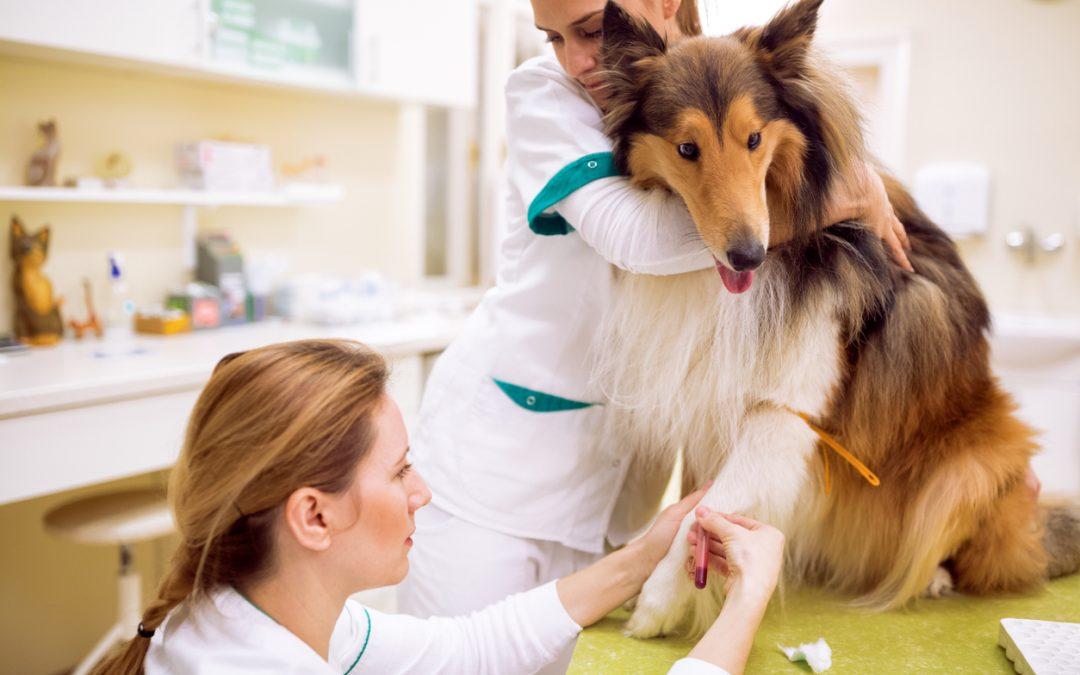 Dogs
Dogs
3+ MIN
14/07/2021
The number of blood donor animals is less than necessary to meet the demand
According to the Director of Hemovet Petcare, Simone Gonçalves Rodrigues Gomes, the initiative is very important to save the lives of dogs and cats, which is why it points out the main diseases in which blood transfusions are indicated: "Severe anemia caused by transmitted diseases by ticks, mainly ehrlichiosis and babesiosis, in the case of dogs". In cats, severe anemia can occur in cases of mycoplasmosis, transmitted by fleas and viral diseases such as feline viral leukemia; Accidents that cause bleeding, such as run over, fights with other dogs, and snake bites; Surgical procedures, especially increasingly frequent tumors and correction of extensive fractures; Anemia resulting from problems in organs such as the kidneys and liver, called renal and hepatic failure, respectively, and immune-mediated hemolytic anemia '. However, to make the donation, which can be made every three months, it is necessary that the animal meets certain requirements, maintaining its own health and benefiting the recipient. 'Dogs must have a minimum weight of 27 kg, age between 1 and 8 years old, docile temperament, updated vaccination and deworming, tick and flea control. Cats must have a minimum weight of 4 kg, age between 1 and 6 years, docile temperament, up-to-date vaccination and deworming, and flea and tick control ', explains the Director of Hemovet Petcare. It is noteworthy that, before the act, and previously, tests are mandatory to detect diseases that may be present without symptoms. Among them, hemogram, tests to detect ehrlichiosis, babesiosis, heartworm, Lyme, leishmaniasis, brucellosis, renal function, mycoplasmosis, feline leukemia and feline immunodeficiency should be performed. "Donating blood is a gesture of love and saves lives and transfusions are essential in the treatment of animals", reinforces the Professor and Manager of the São Judas Veterinary Hospital, Simone Rodrigues Ambrósio, recalling that, in some veterinary blood centers, such as Hemovet Petcare, there is the possibility of scheduling the service. Veterinarian, attention! Although it is not a difficult act to perform, Simone Gonçalves also emphasizes that it is necessary to take several precautions, especially before starting the procedure, such as: 'perform typing and compatibility tests before transfusions of packed red blood cells and whole blood; previously evaluate the vital parameters of the animal and monitor them throughout the procedure (interrupt the infusion in the event of hyperthermia, tachycardia, tachypnea and / or respiratory distress, urticaria and angioedema) and transfuse the indicated blood component to avoid circulatory overload, preventing the appearance of transfusion reactions '. Pandemic factor Still battling the Covid-19 pandemic, which requires social distancing, countless blood banks, already struggling, saw their stocks run out. 'If before the donation of blood from dogs and cats was already difficult to happen, in recent months the situation has become even more complicated. Some tutors opted for home collection and others preferred to cancel it ', explains Kátia García, Veterinary Doctor and Director of the Veterinary Hemotherapy Center (CHVET), adding that the current number of donors is still far below what is necessary to cover the demand. Therefore, for Katia, who emphasizes that a bag of donated blood is divided into blood components and can be used in up to four animals, discussing blood donation with guardians is essential. 'Many of them are unaware of the importance and others fear that the procedure poses some risk to the pet. The entire blood donation procedure is performed by the veterinarian, it is safe, painless and fast, it takes about 10 minutes. In addition to saving lives, the donor performs essential health examinations ', she invites the tutors. All help is needed Finally, Simone Gonçalves reiterates that there is no 'synthetic' blood or a substitute for blood, so 'we need everyone's solidarity so that our mission can continue to save many lives. Each donor will make a difference in the life for a family of pets ', concludes the professional. Source: Caes e Gatos Vet & Food
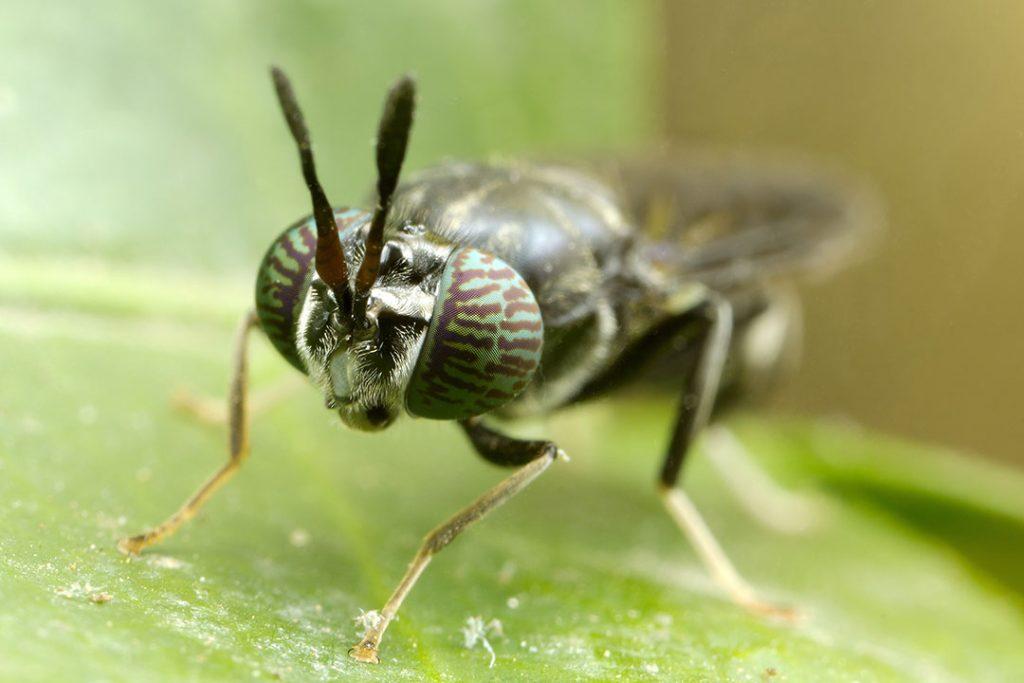 Trends
Trends
7+ MIN
12/07/2021
Insects in feed: Sector ready to upscale
Since July 2017, when using insect proteins in aqua feed was authorised in Europe, more than 5,000 tonnes of insects have been produced in the EU for fish production, according to a survey by the International Platform of Insects for Food and Feed (IPIFF). IPIFF forecasts that by 2030 3 million tonnes of insect protein will be produced annually. To reach these volumes production will need to be scaled up. By September 2019, insect producers in the EU had invested more than € 600 million in scaling up their production and, according to IPIFF, more than € 2.5 billion will be invested by mid-2020. However, this growth depends on the right legislative framework. Insect protein legislation In certain regions outside the EU, such as Africa, Asia and Mexico, consumption and farming of insects is commonplace. Producers in these regions – where legislation is fragmentary or even absent – have fewer restrictions. In Europe, insect production is a relativity new and fast emerging sector, but legislation has yet to catch up. Insects are classified as farmed animals and can only be fed with feed ingredients that are authorised for farmed animals, such as plant origin material, eggs, milk and derived products. This is creating several challenging issues, for example insects cannot be fed with former foodstuffs containing ingredients of animal origin – on the other hand, insect protein may not be fed to farm animals, with the exception of aquaculture species. 'To upscale insect production it is essential that wider use of former foodstuffs is legalised. In addition, feeding insects with such foodstuffs can play a major role in reducing food waste and is therefore in line with the new released 'Farm to Fork' strategy of the European Commision. Authorising former foodstuffs containing meat and fish as insect feed is one of our main priorities.' says Constantin Muraru, Communication Manager of IPIFF. Insects part of a sustainable Food Chain In the 'Farm to Fork' strategy, the European Commission sets goals for a sustainable food chain. According to IPIFF President Antoine Hubert, producing insects for using in feed and food is in line with moving towards a more sustainable and resilient food system. 'Insects could bring value by upcycling former foodstuffs and by-products of the feed industry and insect production would contribute to the EU's self-sufficiency in terms of protein-rich feed materials. Besides, insects or by-products from insect production – such as insect faeces – could provide sustainable biobased solutions,' Antoine Hubert explains. To fully contribute to the objectives of the 'Farm to Fork' strategy IPIFF states that unlocking certain regulatory opportunities is needed and the association therefore considers it essential for the European Commission to develop a roadmap for the revision of the EU legislation on animal by-products. 'IPIFF and its members are fully committed to playing a proactive role in collaboration with the EU institutions and national authorities,' concluded IPIFF Secretary - General Christophe Derrien. Automatising insect feeding is essential It appears that there are still many hurdles to be overcome. Nevertheless, companies continue to invest in the insect business. Since insect protein was legalised for use in aqua feed, production got a boost. Insect producers from other regions are moving to Europe and feed companies are exploring the possibilities of adding insect products to their range. VDL Agrotech, which specialises in feeding machines for pigs and poultry, is developing a feeding machine for the insect market. Feeding insects is labour-intensive, as this is now usually done manually. 'Insects are kept in crates and they need to be hand-fed every day. We are developing a system which ensures that feeding the insects is automated. Mechanisation and automation are necessary to achieve higher production volumes and to keep the cost price attractive.' Tim van Heertum, project engineer at VDL Agrotech, explains. The feeding machine the company is testing will mechanically transport the crates in which the insects are housed to a central feeding station. 'Each insect producer has their own feed recipe, so the idea is that the feeding machine will dose different types of feed, such as various grains, liquids and even carrots, for example. The type of feed also varies for the different stages in the life-cycle of the insects. This is why we aim to include an identification and registration system. Developing the new feeding system is now in the test phase. The first prototype of the machine should be available by the end of this year", according to Tim van Heertum. Insect companies are waiting for the green light The insect sector is developing rapidly and companies are ready to take their insect business to the next level. Unfortunately, legislation is not on their side and, as a result, the sector seems to be on hold. Until former foodstuffs containing meat and fish are allowed as substrates and insect protein can be used as an ingredient in pig and poultry feed, the scale-up will proceed slowly. In the meantime, companies are investing in automatisation of their production, providing new feed ingredients for the aquaculture market. As soon as legislation allows, this innovative sector will grow rapidly. Arnold van Huis, Emeritus Professor, Tropical Entomologist, Laboratory of Entomology, Wageningen University. 'Using insects as animal feed has additional benefits' Why use insects as feed for animals? Using insects as animal feed has additional benefits, not just for nutrition, but also in terms of animal health. Research is being carried out into whether insects can be helpful for reducing the use of antibiotics. For instance, you can boost the immune system of animals by feeding insects and chitin works as a probiotic. Also, the black soldier fly has been investigated for its antimicrobial properties and, in pigs, the lauric acid from this fly can prevent diarrhoea. So, I think these health effects make insects very interesting as animal feed and quite a lot of research is currently being done in this field. Will insect meal mainly be used as an additive in animal feed? I do indeed think it's about mixing rather than replacing the entire feed with insects. Insects will always remain an ingredient, which is also usually the case with those used in fish feed. In some cases, you can replace fish meal by 100% insects, but in other cases this proportion is only 25%. it depends on the species of fish. The feed industry is very cost-driven, so how will insect meal fit in? Using insects for animal feed can only be profitable by making production cheaper, for instance by growing insects on organic residual flows. However, such residual flows are also increasingly being used directly as feed for animals and will therefore become more expensive. The question is whether the insect business can compete with this use. That is quite a challenge, as the insect companies have had to invest heavily in production. Pharmaceuticals, mycotoxins and pesticides are broken down by this fly. It is said that the black soldier fly has other advantages, for instance using insect protein to make bioplastics or using insect lipids as biofuel; could this be more interesting economically? When you're not sure whether the residues which are fed to the insects contain heavy metals, then you might start thinking about using the insects for something else. In addition, the black soldier fly may have other advantages. In China insects are used for biodegradation of catering waste and manure. Biodegradation is very important there. Here biotransformation can play an important role. In Europe we have a major manure and nitrogen problem, so it could be an option to use the black soldier fly to tackle this problem. The flies could possibly convert nitrogen into proteins. A lot of research still needs to be conducted in this field. What about feed safety when insects are fed with former foodstuffs? Heavy metals are accumulated in the black soldier fly, so you have to watch out for that. Pharmaceuticals, mycotoxins and pesticides are broken down by this fly. That is a major advantage. To ensure feed safety, the residues must be certified. In the EU the use of insect protein in feed is restricted; do you think this will change in the near future? Using insects in feed is completely new, and legislation has not been able to keep up. I expect that this will change. In the US, black soldier flies can already be fed to chickens. Europe can't afford to lag behind. I think that point will be reached in about one to two years from now. Free range chickens eat uncertified insects, which are found in the soil, but even if insects are certified, feeding them is not allowed. People are beginning to realise that this is nonsense. There is a great deal of research going on now and there are many steps that still need to be taken. For instance, in genetics. We started studying in this field only one or two years ago, compared to at least 50 years' research on livestock species. Insects have a very short lifespan and research can therefore proceed quickly. However, I think we are only at the beginning and there is still a lot to learn. Source: All About Feed
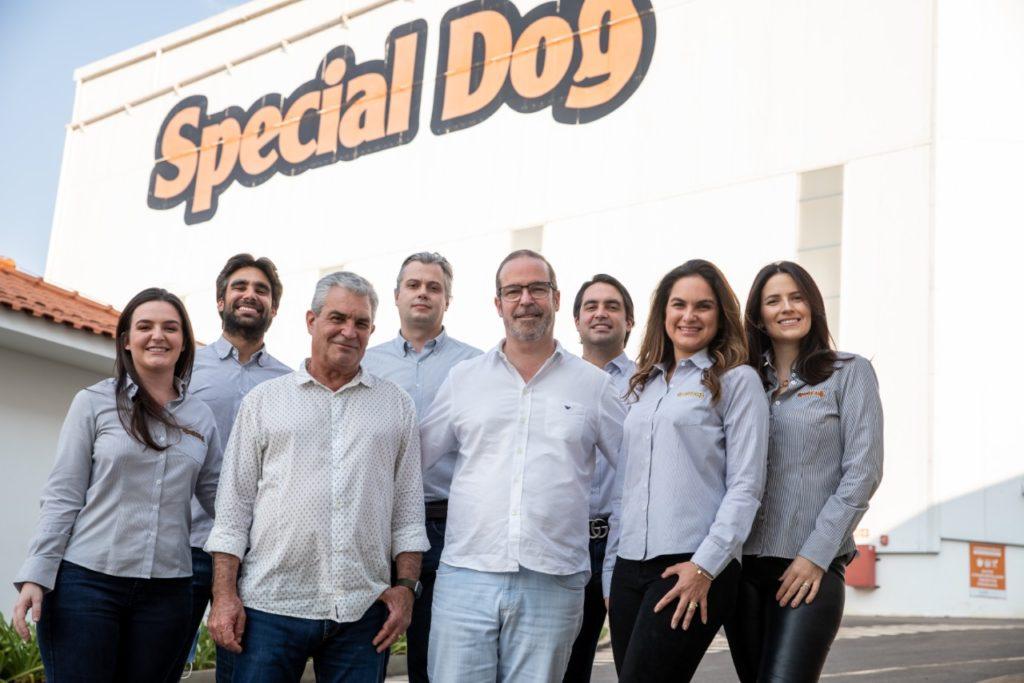 Market Information
Market Information
5+ MIN
09/07/2021
From frustration to billions: How, after some sisappointments, the Manfrim family founded Special Dog Company
The Manfrim family: behind, from left to right, Thiago Manfrim, Marcos Tavares and Gabriel L. R. Manfrim. In front, from left to right, Priscila Manfrim Tavares, Mário S. Manfrim, Erik Manfrim, Natália Manfrim and Juliana Manfrim. Given the reality in which we live, with the Covid-19 pandemic and social isolation, which affected various sectors of the economy, the figures are surprising. However, the top of the segment makes a lot of sense. With almost 142 million pets, Brazil is now the third country in the ranking of consumption of pet products, only behind the United States and China. And, during confinement, a period when people spend many more hours at home, the attachment to pets has only grown, a trend that promises to continue for years to come. According to data from the Euromonitor consultancy, the expectation is that, by 2025, the pet market will expand by 42.7% in Brazil. For those who have invested in the sector, the projections are received with enthusiasm. Priscila, who grew up with the Special Dog Company, a family business, is proud of the vision that her father and her uncles had back in 2001. 'At that point, they already saw that this was a growing segment. As they were of extreme urgency to support their family, they decided to dive into the business ', says the executive. The decision was not the luck of a beginner, in fact the family had already tried several times, without success. "My grandfather, in 1967, created the Manfrim Group, which operated in the production of items such as coffee, rice, cereals and flours," she reveals. 'The attempt did not work, but the final straw was the development of a rice syrup that would be the raw material for a brewery. At that time, my father and uncle were already in the operation and they talk about how frustrating the deal was." After 36 months of trying, the family decided to close the doors and try another sector. The entrepreneurs learned that the Pet market had great possibilities to grow. Concerned about supporting their children and with nothing else to lose In childhood and adolescence, Priscila accompanied the growth of the brand, which finally led the family to success in business. "We had lack of experience and technical knowledge at the time, but we were growing with the market, in a process of trial and error. Trying of doing it well and not too bad, of course", he says with good humor. "This is a motto that we still carry today, even after 20 years of history. Perhaps it is the reason for the turnover of R $ 1 billion or, perhaps, it happened thanks to the balance of our main pillars: the relationship with partners, employees and customers ". Founded in the city of Santa Cruz do Rio Pardo, in the interior of São Paulo, the Special Dog Company started with a small plant for the manufacture of food for dogs and cats. With the growth of the brand, consumer demand began to demand greater and more efficient production, prompting the founders to invest in a much larger space. Currently, the company's headquarters have four dry food factories and one wet food factory, the latter opened only in 2019, after an investment of R $ 80 million. As part of the expansion plan, the company also invested in a distribution center in Curitiba (PR), which helps in the process of delivering products in the south of the country. 'Paraná is our second main market, behind São Paulo. We invested approximately R $ 12 million in the CD ', says Priscila. All this so that the storage capacity reaches 1,500 tonnes.er, they decided to go ahead. The goal is not an exaggeration. Although the brand has yet to be delivered throughout Brazil, operating in only seven states and the Federal District, the export potential requires high production and storage. 'Since 2015 we have been selling our dry products to countries such as the United States, Cape Verde, Sierra Leone, Bolivia and Chile. Last month we began to export wet products, starting with Latin America '. The effort of the team, which already has 1,500 employees, is remarkable, but Priscila highlights the importance of good leadership to achieve positive results. Responsibility and Purpose According to Priscila, Brazil currently has 170 pet food manufacturers operating in its territory. In the midst of so much competition, especially in an environment of rapid growth, the secret to standing out, for her, is never to be satisfied. 'We need to offer good service, quality products and constant improvements. Concern for our production chain, for example, is a differential. It is our logistics team that delivers the products, which is reflected in the quality of the service provided, 'she says. For the executive, delivering in just seven states with excellence is better than serving all of Brazil in a disorganized way. "Little by little, we are evolving and automating our processes." After two decades, haste is not part of the essence of the company. 'We are a family business. We have an extra feeling when we want to evolve the business. It is a mixture of responsibility and purpose for us to be faithful to the values that we have had from the beginning '. In a way, it is easier to convey the essence in a company in a small country, with only 50 employees, than in a large corporation, with a large staff. And that's why Priscila says that patience is part of her way of leading. "We want our first distribution center to be an extension of our industrial park, a part of our family," he highlights, revealing that employee appreciation is one of the main pillars of the company, responsible for the Great Place to Work award. won in 2019. Priscila, who started working at the company in 2017 as an intern, values her first professional experience positively. 'I was very young, but I remember how difficult it was for members of my family to create the company. Now I know that seeing it up close has been an enriching experience. It is not something that has worked for two full decades, but it is a business that continues," she concludes. Source: Forbes
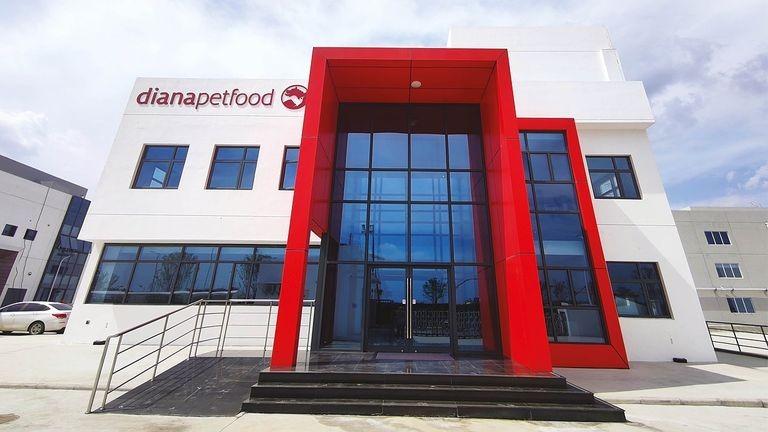 Market Information
Market Information
4+ MIN
08/07/2021
Diana Pet Food opens factory in China
Diana Pet Food has opened its modern pet food facilities in a ceremony on 6 July 2021 in Chuzhou. The forward-looking Chinese entrepreneurial spirit belongs to the reasons that have made the pet food segment grow so dynamically and fast. Diana Pet Food leads the market in this segment and intends to grow further with its state-of-the-art facilities that will advance the pet food capabilities with additional capacities and knowhow. 'This site marks a turning point for Diana Pet Food in APAC: Our investment in China indicates the beginning in our journey to structure and strengthen our presence in the area to meet the growing demand of this highly dynamic market' adds Bertrand de Launay, Diana Pet Food President. The factory in Chuzhou will host a spray dryer on its site as the first Diana Pet Food factory in APAC (Asia Pacific). Diana Pet Food will therefore be able to offer an enlarged portfolio of powder products and address the growing needs of the pet food market in APAC. It will also allow the company to act more independent in the production of those products by managing the supply locally, and to exert optimal control of products' quality and food safety. The site will produce its palatability enhancers sold under the brand SPF and health and nutrition solutions sold under the brand Vivae. The land surface of the new facility exceeds the old facility twelve times, which was also located in Chuzhou. The surface of the new building itself covers an area 20 times bigger than the previous site. The closer, the better The fortified local set-up will enable the company to serve its customers in the region agile, targeted and according to their needs. This approach comes with a long tradition as addressing regional markets with local production sites forms a long-standing strategy at Diana Pet Food. The unique local technical and sales network developed by Diana Pet Food ensures real proximity and customer service for manufacturers. Diana Pet Food regional teams understand the local pet food market needs and challenges in-depth. They are designing solutions perfectly adapted to meet the local expectations. Close to raw materials, Diana Pet Food also guarantees an efficient supply chain and back-up solutions for manufacturers around the world. Alain Symoens, General Manager of Diana Pet Food in APAC says: 'We detach the design of our industrial footprint from random events (such as Covid-19, or any other supply chain events). As they would happen anyway during our customer relationship journey, our new plant shows and confirms the efficiency of Diana Pet Food model and our motto 'the closer, the better'. The first expert measurement center in Asia Pacific Another feature to strengthen the local presence on the market includes an expert measurement center called Panelis. It leads as worldwide expert in pet food palatability measurement providing its clients with studies on cats and dogs' feeding behaviors and preferences. Panelis also delivers insights about owners' perception of their pets' feeding experience. This leading expertise builds on scientific excellence and a strong sense of ethics – two of Panelis' integral assets. The center's teams ensure that all studies contain reliable and objective information, based on repeatable and controlled testing methodologies. Pet-friendly and quality driven, Panelis has conceived protocols that respect product characteristics and the natural and specific feeding rhythms of cats and dogs. The pet specialists are carefully choosing and gently training the pets to become tasting experts. Since they can obtain accurate answers only from healthy, happy, and stress-free pets, Panelis has created the most pet-friendly environment for all its little furry gourmets! Panelis provides this expertise to help market players better serve consumers. Therefore, it relies on both its expert centers in France, Brazil, USA, and now China, housing in total 980 cats and dogs including 60 different breeds worldwide, and an in-home community of more than 2000 families in France, excited to take part in the development of tomorrow's pet food. An eco-friendly factory The facilities bring one more benefit. They entail high standards of environmental friendly design and processes. This goes in line with the Chinese tradition of environmentally friendly construction and the sustainability approach of Diana Pet Food. The company is embedding sustainable measures along its entire value chain. As first, the pet food factory in Colombia has embedded eco-friendly design and operation features right from the start. The design of this new factory in Chuzhou also follows the company's CSR (Corporate Social Responsibility) strategy to minimize the social and environmental footprint and to prioritize sustainability. The building will exert a minimum impact on the environment, and follows the LEED (Leadership in Energy and Environmental Design) certification standards. Examples of initiatives that meet the criteria include: the collection and use of rainwater, the optimization of site energy consumption, the optimization of monitoring and the improvement of health and comfort for our employees with better indoor air quality and noise control. Source: Diana Pet Food
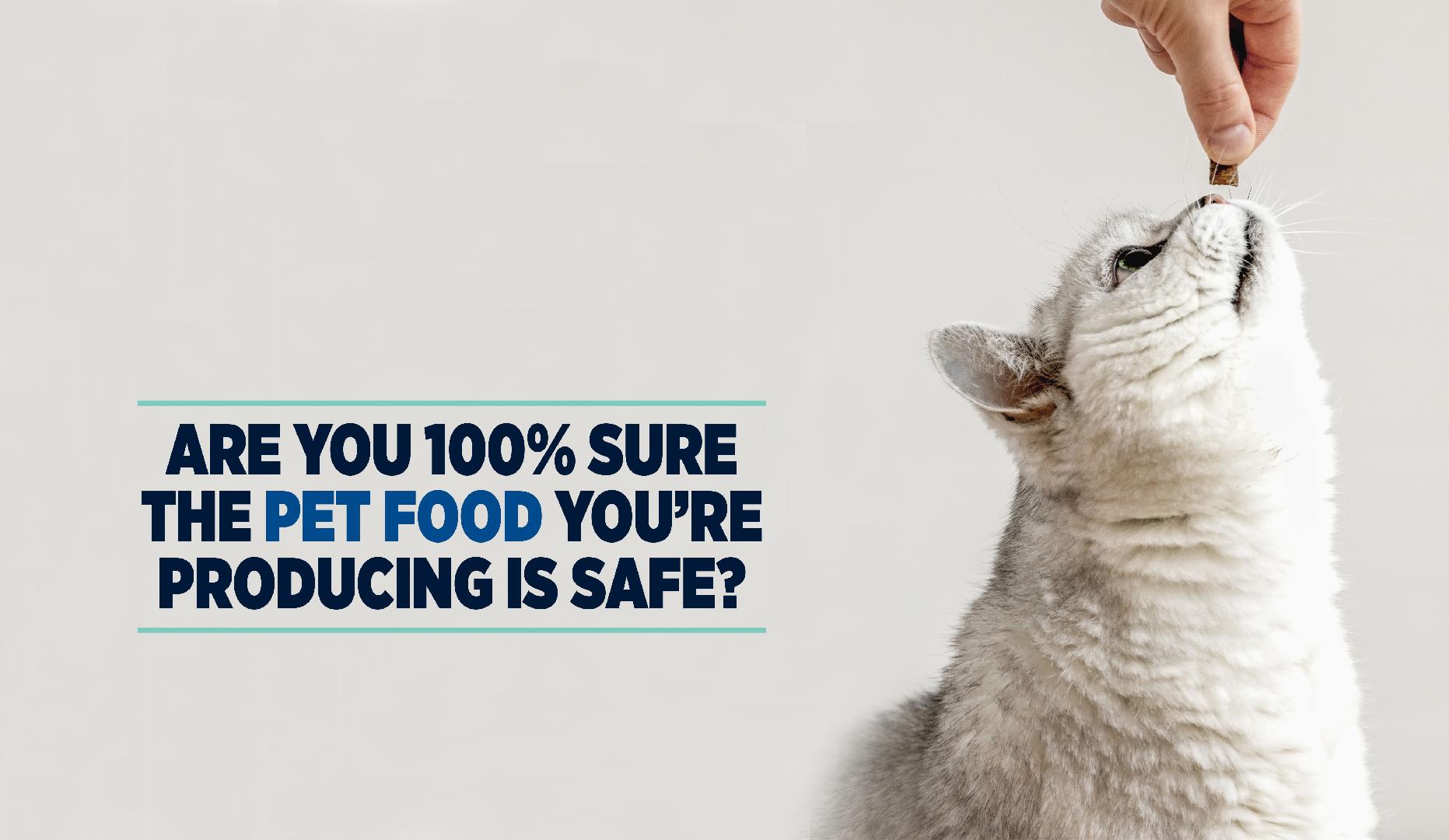 Manufacturing Process
Manufacturing Process
3+ MIN
07/07/2021
TOMRA Food publishes New E-BOOK for Pet Food Processors and Ingredients Suppliers
Leuven, Belgium, April 20, 2021 – TOMRA Food has published an eBook to help pet food processors and ingredients suppliers counteract the threats posed by aflatoxin, foreign materials, and cross-contamination. The six-page publication explains how many businesses could be doing more to ensure their production standards, protect their customers' reputations, and safeguard their customers' beloved pets.
The new eBook starts by asking: 'Are you 100% sure the pet food you're producing is safe?' This is a topical question just months after global news stories reported that more than one hundred dogs in the U.S.A. had died after consuming a well-known brand of pet food contaminated with the naturally-occurring poison aflatoxin. Soon after this, routine sample-testing for aflatoxin in dog foods led the U.S. Food and Drug Administration to instruct 18 pet food brands to recall their products. And as the eBook warns, 'If safety failings can happen on this scale in the world's most sophisticated consumer market, they can happen in any nation where pet food is produced.'
The three big threats to pet food safety and quality are widely prevalent. Potentially lethal aflatoxins can originate in fungus in plants such as corn, peanuts and tree nuts that are used as pet food ingredients. Foreign materials can too easily get into the product stream during the rendering of by-products and the preparation of other pet food ingredients. And dry kibbles can easily become cross-contaminated when processors switch, as some frequently do, from one product batch to the next.
In addition to the need to ensure food safety, flawless product quality is also imperative. The eBook spotlights how global demand for high-quality pet food increases as pet owners in developing nations begin to earn more disposable income and shoppers in developed nations drive the premiumization of pet food containing near-human-grade ingredients. This is an opportunity for pet food producers because premium products command premium prices.
The eBook explains that new technologies are making these market demands easier to meet. This is because TOMRA Food recently introduced advanced optical sorting solutions to the pet food industry and the renderers of by-products from animal ingredients. This has been made possible by recalibrating machines previously designed and developed to ensure the purity of foods for human consumption - machines capable not only of detecting-and-ejecting materials from product streams according to their color, size, and shape, but also according to their structure and biological characteristics.
About TOMRA Food
TOMRA Food designs and manufactures sensor-based sorting machines and integrated post-harvest solutions for the food industry. We innovate the world's most advanced analytical technology and apply it to grading, sorting, and peeling.
Over 12,800 units are installed at food growers, packers, and processors worldwide for confectionery, fruit, dried fruit, grains and seeds, potato products, proteins, nuts, and vegetables.
The company's mission is to enable its customers to improve returns, gain operational efficiencies, and ensure a safe food supply via innovative, useable technologies. To achieve this, TOMRA Food operates centers of excellence, regional offices, and manufacturing locations within the United States, Europe, South America, Asia, Africa and Australasia.
TOMRA Food is a member of the TOMRA Group that was founded on an innovation in 1972 that began with the design, manufacturing and sale of reverse vending machines (RVMs) for automated collection of used beverage containers. Today TOMRA provides technology-led solutions that enable the circular economy with advanced collection and sorting systems that optimize resource recovery and minimize waste in the food, recycling and, mining industries and is committed to building a more sustainable future.
TOMRA has 100,000 installations in over 80 markets worldwide and had total revenues of 9.9 billion NOK in 2020. The Group employs 4,300 globally and is publicly listed on the Oslo Stock Exchange (OSE: TOM). For further information about TOMRA.
Source: TOMRA Food
 Market Information
Market Information
2+ MIN
05/07/2021
Schenck Process with strong start into 2021: Record high in order intake and launch of digital brand
Highlights Q1 2021: Order intake 231m€; up 44%; a record high. Sales 147m€; up 13%. Adjusted EBITDA 17.2m€; up 34% with improved EBITDA-margin of 11.7% (Q1 2020: 9.9%). Baker Perkins, the Group's recent acquisition, outperforming expectations. Order intake (fx-adjusted) grew across several end markets and regions, most notably food (123%), chemicals & performance materials (83%) and the Americas region (83%). Over 50% of order intake continues to be generated from the Group's strategic focus markets of food and mining. Looking forward, across all markets and regions, there is a strong project pipeline reflecting the broad-based pick up in business activity. In Q1 2021 Schenck Process booked additional orders from a leading pet food producer with current expectations of a total order value of over US$150m by year end. The Group also secured further project wins in the chemicals and performance materials markets. In the Chinese polycarbonate industry, Schenck Process achieved a considerable milestone with a first large-scale order from a leading supplier of innovative chemical products. With a focus on environmental-friendly solutions, the Group supported customers in achieving their sustainability goals. In EMEA, Schenck Process enabled a cement and building materials producer to reduce the fuel supply from coal and CO2 footprint by introducing alternative energy sources. In March, Schenck Process launched its digital brand Schenck Process NEXT and introduced its IoT backbone CONiQ® Cloud. Both are key drivers to enhance the Group's digital offerings and leading towards a future of increased connectivity. Further details and updates are available on the Schenck Process NEXT website. CEO Keith Cochrane commented: 'Despite the challenges of the pandemic, the Group has made a strong start to 2021 delivering a good Q1 financial performance and effective execution on our strategy. I am confident that we can continue to demonstrate the strength of our business model and deliver on our strategy moving forward.' About Schenck Process Schenck Process is a leading global provider of sustainable products, integrated solutions and services in mission critical applications for bulk materials. Headquartered in Darmstadt, Germany the Group has 2,800 employees with a presence in over 20 countries across five continents focused on the food, mining, chemicals and performance materials, and infrastructure and energy market segments. The product offering includes solution for industrial weighing, feeding, conveying, pulverizing and classification, screening, mixing and blending and associated digital applications. The Group was acquired by Blackstone International in 2017 and generated revenues of nearly €600m for the year ended 31 December 2020. For further company news and information, please visit By: Schenck Process
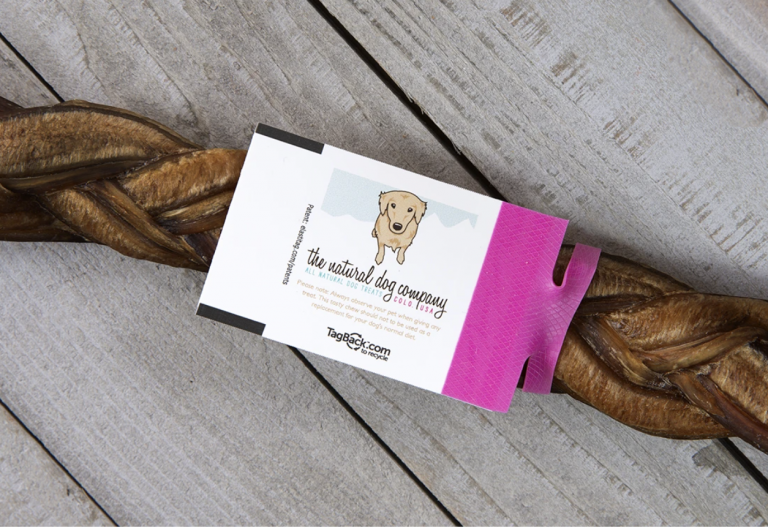 Trends
Trends
3+ MIN
02/07/2021
The Top Three Distributors on Independent Pet Join Forces
2020 was not an easy year for distributors who were caught in a complex web of serving retailers; many who struggled to keep doors open or shift to online purchasing and delivery services, and at the same time distributing products from brands that are experiencing massive supply chain disruption. And then, to add pressure to an already stressed system, pet parents also stockpiled pet food causing unpredictable demand shifts. Nonetheless, the industry fared well as pandemic pet ownership soared, and out of the ashes of struggle comes new opportunity for building back better. As the first distributor member of the Pet Sustainability Coalition, Pet Food Experts had an active year when it comes to sustainability, spending much of 2020 and early 2021 hard at work to support Flex Forward, the first all-inclusive pet food packaging recycling program. Using reverse logistics, PFX rallied retailers and pet parents in the Pacific Northwest to generate approximately 8,000 lbs or 33,500 total used pet food and treat bags. This initial test was set out to inform a potential nationwide recycling program with more than 300 million pet food bags currently ending up in a landfill due to their hard-to-recycle nature. While this unique pilot is a small step in addressing the waste footprint of the 100-billion-dollar pet industry, if scaled, it would provide a solution to one of the industry's most pressing environmental issues. 'Bringing industry leaders together is a necessary escalation in supporting the large-scale efforts that must be mobilized to advance sustainable business practices worldwide,' said Michael Baker, Pet Food Experts' Chief Executive Officer. 'We are making sustainability a priority and this partnership is a step forward in our commitment to reduce the overall environmental impact in our day-to-day business operations,' continued Baker. This is only a single example where collaboration will be required to achieve PSC's vision for the pet industry to make a positive impact on the environment and communities where it does business. Since 2020 was the hottest year on record, there is an increasing sense of urgency to take action. The business community is one of the best levers for change as it can often move faster than the government, and with more impact than an individual, while at the same time reaping greater profitability and return on their investments. While Phillips and Animal Supply Company are new to the Pet Sustainability Coalition, they have arrived ready to take action and with robust enthusiasm. 'As part of our commitment to the pet industry and the environment, Phillips Pet Food & Supplies is proud to become a new member of the Pet Sustainability Coalition. We see our partnership with Pet Food Experts and Animal Supply as the first step in our effort to lessen the environmental impact our industry has on the planet.' said Blaine Phillips, Chief Executive Officer of Phillips Pet Food & Supplies. 'As we begin a new chapter in the evolution of Phillips Pet Food & Supplies, we are proud to strengthen our environmental focus as well as helping to enhance our manufacturer and retail partners focus on sustainable business practices.' 'At Animal Supply Company, our vision is to have a world where every pet and human is happy, healthy, and safe. This means taking an active responsibility in protecting our planet earth through meaningful sustainability practices that lead to a cleaner and more eco-friendly future for our families, retail partners, and vendor partners. We're proud of our industry forging this partnership with PSC and we look forward to making a difference in changing this world through aggressive social responsibility aimed at protecting the environment', says Tim Batterson, CEO, Animal Supply Company. With three major distributor partners now collaborating to drive impact, the Pet Sustainability Coalition is poised to accelerate and scale its programs to deliver optimal solutions that will catapult the industry forward toward a future that is better for pets, people and planet. About the Pet Sustainability Coalition The Pet Sustainability Coalition advances business through profitable environmental and social business practices. Founded in 2013 by eight companies who recognized a need for a collaborative platform to address increasing expectations for sustainable products, PSC now supports almost 200 pet companies to measure, improve, and celebrate their environmental and social performance. PSC also mobilizes its member community to advance sustainable proteins, sustainable packaging, and diversity, equity and inclusion. By: Pet Sustainability Coalition
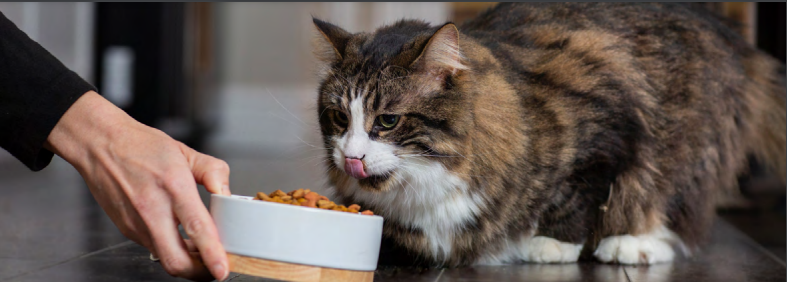 Palatants
Palatants
2+ MIN
30/06/2021
Palatability with less phosphorus is possible
Essential phosphorus Phosphorus is an essential nutrient for cats. It is a key component of skeletal health and is involved in several metabolic processes. This mineral is naturally occurring (organic) in many of the ingredients used in commercial pet food. Organic phosphorus is found in protein-rich sources like meat, fish or bone meal, and in plant ingredients like wheat or bran. Inorganic phosphorus is added to the diet to balance mineral content or for other technical properties such as pH stabilisation, processing, or palatability. Safe upper limit? There is currently no established safe upper limit for dietary phosphorus. However, research has demonstrated that excess inorganic phosphorus can have a harmful effect on cats with existing renal disease. Recent studies suggest there may also be a link between high dietary inorganic phosphorus and renal function in healthy cats. In response, the European Pet Food Industry Federation (FEDIAF) has added a specific footnote regarding recommended nutrient levels for cats as it pertains to inorganic phosphorus: High intake of inorganic phosphorus compounds (such as NaH2 PO4) may affect indicators of renal function in cats (Alexander et al. 2019, Dobenecker et al. 2018a, Dobenecker et al. 2018b). More research is needed to clarify potential risk. New palatants The Pet Food Industry recognises that palatants are a main contributor of inorganic phosphorus in finished cat food. It is also acknowledged that it is quite a challenge to lower the level of phosphorus while maintaining the palatability required to ensure cats receive the vital nutrients they need. Scientists at AFB succeeded in developing new feline palatant solutions to address the challenge. These products contain lower levels of inorganic phosphorus while also maintaining or increasing palatability. In addition to the health benefit of contributing less inorganic phosphorus, these palatants can provide other advantages to pet food manufacturers with formula flexibility that enables potential cost savings. By: AFB International
 Market Information
Market Information
3+ MIN
28/06/2021
Pandemic Pet Boom Boosts Results for Animal Health Companies
Elanco Animal Health Inc. and Zoetis Inc., two of the industry's major players, both raised their earnings forecasts this week after reporting strong first-quarter results buoyed by Pet care. Last week, the pharmaceutical giant Merck & Co. said sales of its companion-animal drugs increased by 26%. Millennial and Gen Z consumers, or those under age 40, are spending more on their pets, especially as they engage with their animal companions more than ever during the pandemic, Elanco Chief Executive Officer Jeffrey Simmons said in an interview. What's driving the spending, he said, is that 'over 75% of them believe that their pets are an integral part of the family'. Elanco, which was spun out from drugmaker Eli Lilly & Co. in 2018, boosted its revenue forecast for the year on Friday, saying pet health sales increased 213% in the first quarter. The growth was also spurred by the company's acquisition of Bayer AG's animal health unit in 2019, which created one of the world's biggest veterinary medicine companies. The results came a day after Zoetis reported a record quarter, with revenue climbing 22%. Sales of companion-animal products increased 32% in the U.S. The company also saw a 10% gain in revenue per pet visit. More owners now have increased expectations of care for their Pets, Simmons said, and he expects that to continue even after the Covid-19 pandemic is over. Total pet clinic visits were up 5% in the quarter, and wellness visits rose 16%, trending above pre-pandemic levels. Online pet shopping is also up. Elanco said 1 in 3 pet owners shifted to spending online during the pandemic, and nearly all expect to continue. And a third of veterinarians expect to continue using telemedicine after the pandemic, the Greenfield, Indiana-based company said. Virtual Vets The gains are linked to an increase in so-called curbside veterinary care, in which doctors send treatment recommendations and diagnostics via email, leading to less negotiation about treatments and prices, Zoetis CEO Kristin Peck said in an interview. Pet care now accounts for 55% of the company's portfolio, compared with 35% in 2014. 'It has been growing and will continue to grow both in terms of revenue and the growth of the sector', Peck said. Zoetis expects people to continue spending more on their Pets, especially as flexible working hours become more common, allowing people to spend more time at home. Since last summer, Zoetis has seen a significant increase in the adoption of Dogs and Cats. But what's more significant is the amount of time people are spending with their pets. Homebound people are more engaged with their Pets, Peck said. 'Pet owners have become accustomed to a certain level of care', Peck said. And as Pets age, their care needs will likely increase. Data from Idexx Laboratories Inc. shows that a quarter of adult and senior dogs require a follow-up visit after preventative blood and fecal diagnostic tests, said Ann-Hunter van Kirk, Senior Biopharmaceuticals Analyst for Bloomberg Intelligence. That figure increases to nearly two-thirds by the time canines reach age 15. Also, Pet gerontology experts have noted an increased lifespan for pets, estimating that more than 50% of canines over 90 pounds (41 kilograms) are now living longer than 11 years. 'We believe this trend could continue, driven by improvements in veterinary care and nutrition, which may raise demand for preventative companion-animal diagnostic tests,' van Kirk said. By: Bloomberg
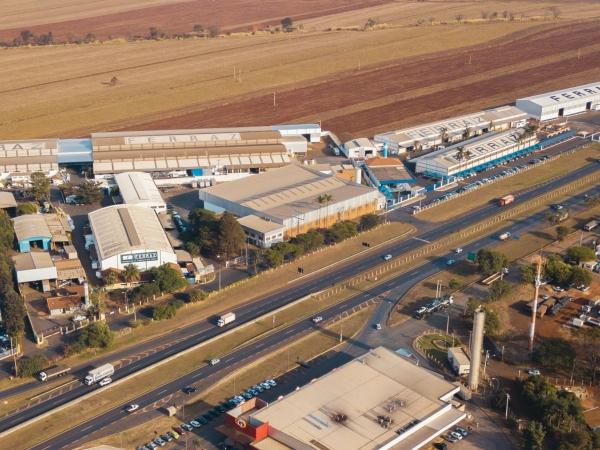 Extrusion
Extrusion
1+ MIN
25/06/2021
Tips to improve Ferraz Equipment
With this in mind, we are preparing short videos with tips on how to operate equipment, like mills and twin-screw extruders, for example, and help you in this important maintenance and performance process. Subscribe to our YOUTUBE channel where we constantly publish videos with usage guidelines, suggestions and information about Ferraz equipment, in addition to the services and training we offer. See the latest videos published: Source: Ferraz Máquinas e Egenharia LTDA.
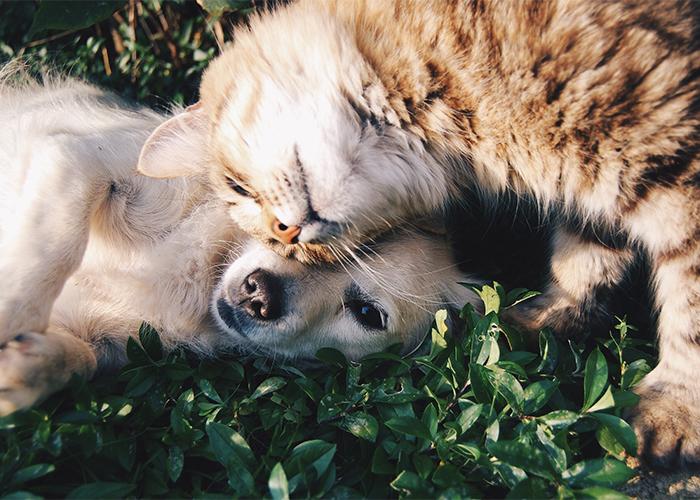 Trends
Trends
2+ MIN
23/06/2021
Croos Feeding, the Global Trend in Food - What is Cross or Mix Feeding?
For those unfamiliar with this term, it is a way of feeding dogs and cats that involves a combination of wet and dry food. Wet food has a priority place and complements dry food, since due to its high moisture level, it keeps the body well hydrated. The thing about dry food is that the hydration level is very low. The humidity it contains is around 9%, while in wet food it is usually around 77%. However, what differentiates it from wet food is its nutritional capacity, i.e., the nutrient content is much higher. So, if we wanted to meet a pet's daily nutritional needs with wet food, we would have to feed it many more times a day than with dry food. For this reason, the combination of both helps to improve the quality of pet food. Dry food satisfies nutrition and wet food satisfies hydration. In addition, cross feeding is ideal when pets have difficulty consuming food, often due to lack of palate stimulation or simple apathy. So, by trying new textures and flavors you can encourage their appetite, while providing them with the best benefits, because besides being a highly tasty combination, cross feeding has other advantages for pets: Texture and crunchiness Urinary system benefits Calorie control Hydration increase Dental health improvement Appetite and palatability increase How to Supply it? Is it Suitable for all Dogs and Cats? Basically, all dogs and cats can enjoy this type of food. However, it is recommended that the buyer consults with his or her veterinarian. When supplying it, some general recipes can be followed according to the size, activity and age of the dog or cat. An easy way is to divide the plate into ⅓ of wet food and ⅔ of dry food, as shown in the chart. Because dogs and cats have different weights, the size of the dish and amount of food will be different. To have an idea of the quantities to be supplied, you can consult the following table according to the size of each pet. Other Cross Feeding Benefits As we said, all dogs or cats are different, they have different sizes, ages and, therefore, different conditions. Hence, the benefits provided by cross feeding will be different for each of these animals. For example, in puppies, this type of feeding facilitates the transition from mother's milk to balanced food and allows the incorporation of crunchiness with the dry food. As their digestive system is still young, it is recommended to give them several servings a day, always taking into account the rules of cross feeding and considering their caloric needs. On the other hand, in adult dogs, cross feeding favors hydration, both in dogs and cats; it increases urine production, which is essential for pets predisposed to urinary problems; it is ideal for obesity treatments, urinary tract diseases or kidney problems, and even for post-surgery. By: WMG
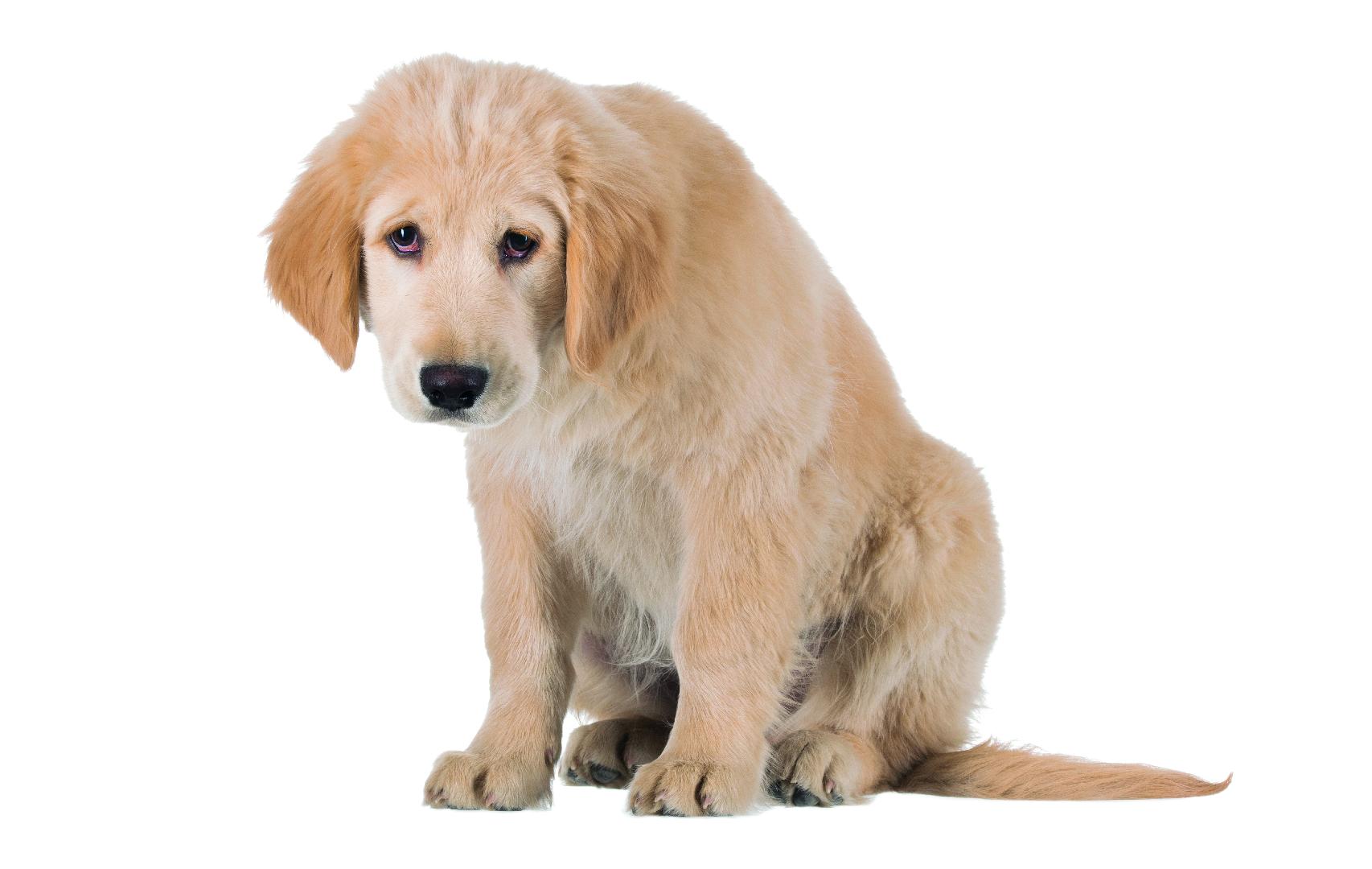 Dogs
Dogs
4+ MIN
21/06/2021
What is the Relationship between Cancer and Dog Food?
In this article we'`ll focus on the different studies and advances in the area, in order to have a better understanding of the influence of food on the development of this disease. There is very little research data on evidence-based dietary guidelines to prevent or control canine cancer. Currently, 1 in 4 dogs has a high chance of developing cancer. As in humans, the incidence of cancer in canines has increased in recent decades. Factors such as nutrition, lifestyle, exercise and toxins are capable of altering the genetic component, either positively or negatively. For example, chronic inflammation induces epigenetic alteration, and has been shown to increase the risk of developing cancer in humans, so the same can be predicted for dogs. Let's see what evidence or studies have been carried out to date. Research on the relationship between dog food and cancer • In the United States, the specialized animal health and nutrition company Alltech conducted research and tests on commercialized dog foods and, in addition to finding high levels of aflatoxins, 98% of the total of 965 foods tested were contaminated with one or more mycotoxins. Now, with aflatoxins it happens that, because what could cause cancerous tumors is the consumption of contaminated food for a long period of time, it is very difficult to corroborate when the disease develops due to the consumption of this fungus, since it is they would report very few cases. • In 2020, the Hong Kong Consumers Council made public that 3 mass-marketed US Pet Food manufacturers had formulations containing aflatoxin B1 in their offering. Grains such as corn, wheat, and rice, as well as nuts and legumes, can become contaminated due to poor storage conditions. This contamination is caused by a mold known as aflatoxins. The first documented aflatoxin outbreak dates back to 1974, when hundreds of stray dogs in India died after eating corn kernels contaminated with aflatoxins. In 1998, 55 dogs died from the same cause, and in December 2005, in the United States, more than 100 dogs died from pet food made from aflatoxin-contaminated food. As we've already discussed in this article, aflatoxins are a very powerful carcinogen. This study also found melamine and cyanuric acid in the food of 3 US brands, substances with which, in 2007, thousands of pets were poisoned. • Two studies have determined the composition of the diet of dogs with breast cancer. One study was conducted in Philadelphia, USA and the other in Madrid, Spain. Both studies included a quantitative questionnaire about the food frequency on the dietary intake of proteins, fats and carbohydrates. In the study conducted in the US, it was found that dogs with mammary tumors consumed slightly less fat and more carbohydrates. However, the opposite was observed in the Spanish study. The two studies indicate that the composition of the diet, expressed as energy percentages of the macronutrients, is not exclusively related to the risk of breast cancer in dogs. Instead, the two studies identified an equal risk factor: youth overweight. In the study conducted in the USA, it was shown that dogs that were lean at one year of age had a lower percentage of breast cancer in adulthood. In the same way, the Spanish study showed that dogs with obesity at one year of age developed breast cancer in a higher percentage. These results allow us to affirm that the prevention of overweight not only contributes to longevity, but also to a delayed development of mammary tumors in bitches. • Another study examined the relationship between vegetable consumption and bladder cancer in the Scottish Terrier breed. The results showed that carrot consumption could have benefits in the prevention of cancer in dogs, although there is no causal relationship. Other relevant data • Heterocyclic amines (HCA) and polycyclic aromatic hydrocarbons (PAHs) are chemicals that are formed when muscle meat is cooked at high temperatures. They are mutagenic, which means that they can change the structure of DNA, and in fact, research has emerged suggesting that these chemicals increase the risk of cancer in humans and some animals, such as rats. This shows that, when extruding the food, we must be very careful with the temperatures we use throughout the entire process. • Since 1930 it has been known that glucose is related to the growth of cancer cells. Back then, it was discovered that cancer cells exhibit a higher rate of glycolysis than normal cells, which means that they generate energy to grow from the breakdown of glucose. This leads us to rethink the amount of carbohydrates that food contains (in some cases it has been seen that they occupy more than 50% of the formula). Summary More research is still required to determine the extent of the link between dog food and cancer development. However, it is important to remember, both for the industry and for the owners, that each bite that an animal ingests will have effects on its body and health, which can be negative or positive. It is very likely that the composition of a diet affects both the development of canine cancer and the course of the disease, but the truth is that there is only fragmentary information from published research. By: All Pet Food
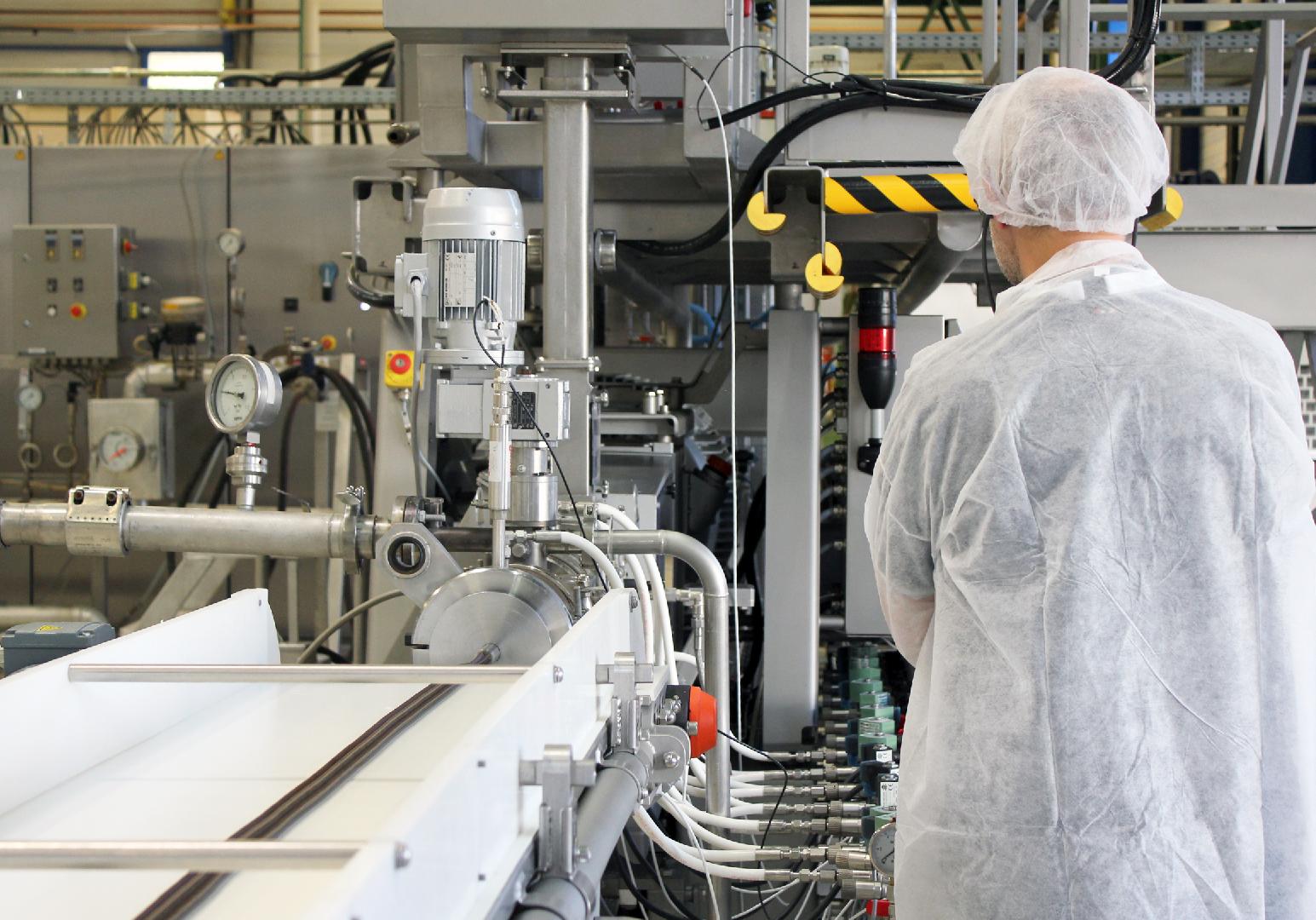 Extrusion
Extrusion
6+ MIN
17/06/2021
Innovation on the Pet Food and Treat Production with Twin Screw Extrusion
The The planned expansion is based on the global increase in pet adoption, increased awareness of the importance of nutrition for animal health and a continuing trend to view pets as one more member of the family. These patterns have created great opportunities for pet food producers, especially in specialty markets. These include premium, natural, grain-free, organic, or protein-enriched food niches, as well as wellness niches that focus on skin care and allergy management, digestive health, and urinary tract, puppy and kitten care, or senior pet nutrition. Within these niches, there are also micro-markets for specific activities or breeds of dogs and cats. These opportunities, combined with the emergence of new technologies, enable the levels of creativity and innovation unheard of for pet food and treat manufacturers. Twin Screw Extrusion Opens a door to New opportunities Not too long ago, the common practice for pet food production aiming for cats and dogs was to mix basic grains with water, process them in a single screw extruder and coat the finished product with oil, essential and tasty nutrients. The increasing sophistication of the market and the emergence of more studies supporting the importance of nutrition for dogs and cats - together with the trend towards a humanization of pet food - have led to the adoption of Twin screw extrusion technology replacing single screw extrusion. This change is explained by various reasons. Twin screw extruders enable complex, high-level processing tasks with precise control of mix intensity and product quality. The twin screw platform offers a greater degree of process flexibility thanks to independent screw speed and production functions, along with the ability to perform several different processing functions at the same time. We can have a much better control of the processing parameters (including inputs of heat, shear or mechanical energy) improving the quality and consistency of products, as well as protecting volatile ingredients to preserve their effectiveness. The gradual introduction of new ingredients for pet food manufacturing has shown that twin screw extruders can competently process a wide variety of raw materials and mix formulations that are difficult to process in single screw extruders without the aid of equipment. or additional readjustments. Today, market demands go well beyond the previous "meat-like" requirement. Ingredients in pet food and treats can include vegetables (squash, beans, carrots, or broccoli), alternative proteins (yeast, nuts, algae, or insects), and fruits (blue and lingonberries, melons, or apples). Feed with a high meat content is also very popular. Other areas of opportunity reside in nutraceuticals for pets, capable of providing nutrients, vitamins or medication in an animal-friendly format, as well as meat substitutes. While these new products can ensure high profit margins, they require scalable and reliable processing with precise process control to protect the integrity of sensitive ingredients. For this reason, the twin screw extruder has become an indispensable tool for pet food manufacturers who want to meet the demands of those "pet parents" looking for premium pet foods and treats with clear labels, healthy ingredients, advanced nutrition and miscellaneous attributes that mimic the quality and visual appearance of human food. Development of New Products for specialized Markets It is important that producers take into account the niche market they are targeting before developing their products to design ones that are attractive according to the preferences of pet owners. In today's marketplace, pet food and treats are expected to offer animal welfare benefits, healthy ingredients, and quality protein sources. Niche products have additional requirements that require testing, evaluation and refinement of recipes and ingredients during the R&D process. A conventional R&D center will handle design, laboratory testing, prototyping, small-scale batching, and industrial simulation. In this process, the twin screw extruder offers the flexibility to quickly change production parameters (screw configuration, barrel length, residence time, shear, expansion) and process controls (liquid and vapor injection, flow channels). heating and cooling) to quickly adjust the properties of the products. This also allows tests to be completed with the least possible residue, which is an important factor when working with high-quality ingredients, vitamins or nutraceuticals. Furthermore, while real-time operating conditions can be monitored from the operator panel, all data is logged for future review and analysis. Twin screw extruders often have features that make it easy to access the product and clean (Clextral has automatic barrel opening) to, in addition to saving time, allowing developers to effectively test various recipes in each rehearsal session. This flexibility will also benefit manufacturers when products are moved into a real production environment, as it will allow the processing of several different products on the same production line and extruder with minimal downtime for product changes. A key advantage for supplying products to small niche markets. From the Laboratory to the Production line After a product has been developed in the test center, scaling is a critical step to ensure that the product derived from the extruder on the production line exhibits the same attributes as the product derived from the R&D unit. Therefore, the design of the extruder is an important factor. Clextral extruders feature proven homothetic designs to ensure predictable scaling. Producers should rely on the specialized knowledge, experience, technical assistance and training provided by their extrusion equipment suppliers to optimize product quality and consistency on the production line. These extrusion experts are continually testing and improving processes and recipes to support their customers, so they should be seen as key players on the development team. Preconditioners improve Product Quality and increase Production Preconditioners have long been used to increase extruder output by pre-processing the grain and initiating the gelatinization of the starch. This process decreases the required residence time within the extruder for a higher production volume with less wear and tear on the equipment. Today, preconditioners are used to offer additional benefits: • Initial mixing of all ingredients to ensure uniform distribution and hydration before extrusion. • Improved thermal energy transfer to the product to preserve its nutritional properties. • In the case of products with a high meat content, the introduction of the meat in the preconditioner provides a longer residence time for mixing with the dry ingredients in order to ensure the homogeneity of the products. Twin Screw Extrusion Technology can meet present and future needs Twin screw extrusion offers numerous advantages for pet food producers, as this technology provides a complex mixing and processing system for the production of sophisticated products within a hygienic, flexible and infinitely repeatable platform. In addition, considering that the market is constantly evolving, the twin screw extruder can be easily reconfigured for the processing of new products that meet consumer expectations. Key benefits: Greater consistency in production and product quality control. Maximum productivity thanks to continuous processing, more agile startup and shutdown between faster product changes, and advanced automation. Unbeatable flexibility with the ability to process a wide variety of raw materials. Optimized environmental impact thanks to saving water and energy. Simple and easy maintenance and cleaning. How to Succeed in Specialty Pet Food and Treat Markets It is important to study trends, consumer wishes, and competition to determine those products that the pet food market demands at all times. A healthy food or treat does not guarantee success if it does not satisfy the needs or attract the interest of the consumers to whom it is directed. With the twin screw extrusion platform, producers have flexible development and production tools capable of optimizing their processes and facilitating their adaptation to changing market needs. This technology not only enables producers to capitalize on emerging trends and opportunities, but also ensures their reactivity to succeed in the Pet Food market. Author: Hadrien Delemazure - Feed Extrusion Expert Source: Clextral Inc.
 Market Information
Market Information
4+ MIN
16/06/2021
Wet Foods: The Market Today and its projection for 2022
This also implies changes in the pet market's trends. These transformations that we are witnessing are the reason why wet foods have gained an important role in the market. The emergence of a new generation comes hand in hand with new demands and today, among them, we find the search for a good diet for dogs and cats based on the benefits of wet food. Hence, these needs are directly reflected in the market numbers. In recent years, the sales of wet products have grown significantly. For example, in Europe, 44% of total food sales are dominated by wet foods, while 56% are dry foods. In the United States and Oceania, this type of food is also beginning to establish itself in the market, accounting for 27% and 33% of sales, respectively. Among those considered as wet, we find pâtés, mousses and other variants such as small pieces in sauce. In Latin America, growth is still slow, but current behavior in the leading countries shows that this is a trend that will have a strong impact on the continent. If we look at the numbers, we can determine that it is a market dominated by dry foods, since the total percentage of sales is 90%. Wet products account for 7% and treats for 7%. In any case, wet food is growing much faster than the other categories. Growth in Argentina is also progressive, with total wet food sales representing 2%. This implies that there is still a long way to go, especially if we take into account that the appearance of wet products on the market in the region was only a few years ago. These emerged as complete foods for dogs and cats, as supplements for recovery after surgery, or as food for senior dogs or dogs with specific problems. How can growth be accelerated? All growth is based on development and innovation, i.e., new products are needed that are innovative and accelerate the growth of this category. Europe and North America are concrete proof that with improved products, the balance can be tipped towards the great benefits of wet foods. Moreover, the pandemic had effects not only at the epidemiological level, but also on the socio-psychological aspects of people around the world. It is logical, then, that this has also had an impact on people's habits, behaviors and lifestyles: there are more families with dogs and cats, there has been a worldwide boom in adoptions, people are looking to expand their families and enjoy time at home surrounded by nature. The increase in the population of dogs and cats implied, consequently, an increase in the market in general. There were also major changes in the way mass consumption products were purchased and wet foods were one of the categories with the higher increase in online sales. Better and better, high quality and natural products are increasingly sought after. Wet foods are ideal for that. They are made with first quality products and ingredients, and this implies a balanced and complete nutrition. All these contextual changes have a direct impact on the market and it is essential for companies to be aware of them. As we have seen, technologies are the source of very profound transformations, one of them being consumers. In a world surrounded by information and devices, a new generation of consumers called millennials is emerging. It is the generation most committed to their pets, betting and investing more in them. Today, they are the largest owners of dogs and cats and the ones who spend the most money on veterinary preventive care and products. In a survey conducted, 86% of millennial respondents feel that a natural food is vital for their pet. For them, it is essential that the food is produced with organic or natural and hypoallergenic materials. In this sense, wet is ideal for that. The perception of pets has also changed with the emergence of this generation, causing consumers to demand the same values from brands that they will demand for other family members, including personalization, convenience and quality. In the book 'Antrozoología y la relación humano-perro' (Anthrozoology and the human-dog relationship), Díaz Videla includes the results of a survey of his own made in Ciudad Autónoma de Buenos Aires, where he shows that: In the event of an emergency where they must evacuate their home, 96% of participants said they would take their dog with them, even if it affected their own safety. 70% say that, faced with an extreme situation, if they had to choose between saving their dog's life or that of an unknown man, they would save their dog. 96.9% of Buenos Aires' residents consider their dog as a "member of their family" and 64% say it is "like a child". Thus, changes in families imply changes in consumption habits, modes of purchase and even in the constitution of the family. Values change and certain ties and bonds are strengthened that were different in other times. This is why companies must support these changes and adapt to the new needs of the market, which, although it is changing, it is always possible to analyze its trends. By: WMG
 Conveying Systems
Conveying Systems
10+ MIN
14/06/2021
The Complete Guide To Industrial Conveyors
In 2020, the global conveyor market was estimated at $7.73 billion. By 2026, this value is expected to increase up to $10.07 billion. Short production cycles, advancements in e-commerce (especially due to the global health pandemic), and an improved international flow of goods all contribute to the growth of the conveyor market. The globalization of the economy is a direct result of the automation that conveyors bring. If your business needs a new, faster, and more reliable way of transporting items (raw materials, goods, or products) within the same facility or area, industrial conveyor systems are the right solution. The complete guide to industrial conveyors will present you with the basics of what you need to know about these systems, how they work and how they are used, and how you can select the best type of conveyor for your organization. Conveyor Systems: Definition Intralogistics is the process of managing the flow of information and material goods inside a production or distribution facility. Conveyor systems are an important segment of intralogistics. They serve to transport bulk products, raw materials, goods, or any other type of materials from point A to point B that are usually located in the same area or even building. The industries that benefit the most from conveyors include: Mining industry Warehouse and logistics Agricultural industry Aerospace industry Chemical and pharmaceutical industries Food processing industry Packaging industry Beverage industry Automotive industry Bottling and canning industry, and more The main reason why industries have almost completely switched to automated material handling and transport is that this enables them to move vast amounts of material and continuously operate. Compared to workers who need rest, conveyor systems don't need much downtime due to maintenance and cleaning. They can run almost non-stop, which means the production numbers of your facility will skyrocket. The System Breakdown How does an industrial conveyor system work, anyway? Depending on the type of material it is handling and its purpose, different conveyors, work differently. Nevertheless, all of them have a few basic components they cannot function without Drive There are three most common drivers (power sources) for conveyor technology: Motors Gravity Manual drive Industrial systems are typically powered by motors. The most prevalent motors for conveyors are three-phase AC motors, perfect for systems that continuously run in one direction. Single-phase comes with starting windings and capacitor delays, which are not suited for conveyor systems. Most facilities utilize 440V motors because, with high voltage, there are lower transmission losses over the grid. However, not all conveyors need to be powered by electricity. Manual and gravity-based systems are usually centered around rollers. Rollers inside a frame allow workers to push an item from one point to another if the frame is horizontal or slide it down an angle if the frame is tilted. These conveyors do not require any energy to function and are a good fit for packaging processes, where large, non-fragile items are moved around. Mode of Transfer The main difference between conveyor types is the way they move materials. This can be done in any number of ways or combinations determined by the production facility's goals. You will often run into the following methods of transporting goods: Belts – made from various materials that rest on a steel frame that supports them and the items they're moving. Chains – endless chains move thanks to sprockets at each end of the trough. Buckets – containers attached to belts, cables, or chains that move the material along. Cables – moving materials with the help of a coated, flexible, stainless steel drag cable with discs attached to it. Pneumatic – moving materials thanks to compressed air (positive conditions) or a vacuum (negative conditions). Screw or auger – a helical blade called an auger, typically placed inside a tube, that rotates and moves the material. Aero-mechanical – the material is driven at high speeds on evenly spaced discs. These are just some of the examples of how conveyors transport materials. Which one is most suitable for your business depends on a series of factors we will cover in a bit. Support An industrial conveyor system would not be able to operate without many of its support mechanisms. It needs the proper frames to hold the belts, chains, sprockets, buckets, and similar components. It also requires cleaning or maintenance features. Controls Lastly, industrial conveyors are controlled in various ways. Some operate only in one direction, while others can reverse direction if needed. All conveyors should be outfitted with emergency stop buttons and safeguards in case of an accident. Conveyor Applications What are industrial conveyor systems used for? We already mentioned that their primary purpose is to move products or materials. These systems can also store and buffer materials if the process requires it. Here are the main applications of an industrial conveyor system: Moving Materials Standard transport. If there is a need to move the same type of material from the same starting point to the same endpoint over and over again, there is no point in forcing workers into these repetitive motions that might damage their health. The movements of forklifts can also be reduced by installing a conveyor that will cover this distance and take over the transport. Heavy load transport. Some items cannot be moved due to their size and/or weight. Special conveyor systems are built for materials that are too large or too heavy for a worker or forklift. Assembly conveyor. Working on an assembly line requires a conveyor to move an item as workers perform their tasks. These conveyors are frequently used in a wide range of industries, especially in the automotive sector. Protection from damage or injury. Some items are not too heavy or too difficult to move. However, performing repetitive movements, such as transporting a product from one location to another, represents a danger to workers' health. Conveyors can achieve the same in less time and with much less muscle strain involved. Also, some products or materials are too fragile to be moved by hand or forklift. Human error is a significant factor in why businesses suffer losses in the manufacturing process. To reduce this risk, it is good to introduce conveyors as a safe way to transport easily damaged products. Bulk material transport. Gravel, sand, iron ore, coal, and similar are not easy to transport no matter what your options are. The right type of conveyor can prevent many headaches when it comes to moving materials in bulk. Complete automation. In the end, perhaps you are aiming to automate your business from head to toe. If there are no workers involved in some segments of your production, conveyors and robots, go hand in hand. If robots deliver products to the conveyor or receive them from the conveyor, it is easy to control the production and adjust it for just the right output you need. Storing and Buffering Product storage. If there is a demand for product storage before the next production step, specific conveyors can accommodate this. Accumulation bank. An accumulation bank is also called a buffer. This is a flexible type of storage that manages the flow of production. A buffer can either be increased or decreased depending on the demands of the process. Conveyors can also allow workers to sequence and resequence products between processes. Organizing products into batches and prioritizing them increases productivity. Types of Conveyor Systems Based on this outline of conveyor basics, it is rightful to assume that there are various systems. So, what are the different types of industrial conveyors? Let's explore the seven most common conveyor types. Aero-Mechanical Conveyors Aero-mechanical systems are made from a steel tube with a circulating rope running through it. Evenly spaced discs along the rope carry material, creating an airstream by moving at high speeds inside the tube. These speeds generate a centrifugal force that ejects the material once it reaches its destination. These conveyors can operate vertically or horizontally and are quite flexible. They convey materials at high velocities, depending on their application, and are easy to clean. At the same time, these velocities lead to compromised material integrity. If the goal is to reduce material breakage in such a system, the speed should be slow and steady. Aero-mechanical conveyors also require rope-tensioning, making them difficult for maintenance. Auger (Screw) Conveyors Auger is a helical blade (a screw) that moves granular or liquid materials by rotating, usually inside a tube. The rate at which the material is transferred is directly related to the rotation speed of the auger. It is one of the first conveyors to be invented since ancient Greeks used it to transport irrigation water. Screw conveyors are good at transporting semi-solid materials, like food waste, municipal solid waste, animal feed, meat, boiler ash, aggregates, and similar. They are also easy to clean and maintain because they don't have many moving conveyor components. Unfortunately, auger conveyors can compromise blends and lead to material breakage. Their efficiency isn't as high in steep inclines, and it cannot be used in spaces that require multiple planes. Belt Conveyors Belt conveyors are arguably the most common type of conveyor, found in practically every sector. They have two or more pulleys and a closed loop of material (the belt) that rotates around them. A motor can power these pulleys to move the belt and its materials in the right direction. There are two main types of belt conveyors: For bulk materials, such as coal, salt, grain, ore, and sand For general materials, such as boxes, solid items, and packages Belt conveyors are not used only in industrial settings. They also transport luggage at airports, food at restaurants (such as sushi conveyor belts), and even skiers at mountain resorts. Belt conveyors can also be enclosed to prevent loss of material and contamination. Bucket Elevators Bucket conveyors move flowable bulk materials (grain, fertilizer) upwards in multi-sided containers. The most significant downside of bucket elevators is that they have a lot of moving parts which are difficult to maintain. Aside from the buckets, this system also includes a belt to carry the buckets and a power source to drive the belt. It can also come with accessories for loading the buckets, receiving the discharged material, and similar. These conveyor systems have low driving power and are therefore quite efficient. However, bucket elevator components require high maintenance expenses, and the equipment is challenging to clean. Cable Conveyors Cable material handling systems include a cable, usually one made of stainless steel. If they are enclosed, tubular cable conveyors minimize contact with food materials and preserve material integrity. To transport the material, solid discs are attached to the cable. They push the material through the tube. Cablevey tubular cable systems have low energy consumption because their motors are typically 5 HP (up to 7.5 HP). They can move material at angles, vertically, horizontally, or in tight sweeps. They have removable parts, making them easy to maintain. The main advantage of tubular cable systems is that they eliminate the factor of material degradation. They provide a dust-free environment and allow for consistent blending. They are ideal for the following materials: Nuts Snack foods Pet food Breakfast cereal Coffee Frozen food Specialty seeds Beans Powders Biomass Fluff plastic Industrial hemp, and more Chain Conveyors These conveyors are made from an endless chain supported by sprockets. Chains can have special attachments to them for carrying specialty loads. Transporting heavy loads is the main use of chain conveyors (very wide or very long items such as pallets, industrial containers, and grid boxes). In the automotive industry, chain conveyors transport vehicle parts through paint plants. They can also be found in the pharmaceutical industry. The difficulty with chain conveyors is that the sprockets need frequent replacement, which leads to prolonged downtime. Chains themselves are easy to maintain since individual links can easily be replaced. However, they are not easy to clean. They are not suitable for fine, powdered materials because they can accumulate in the links and lead to the breeding of bacteria. These systems also require a lot of power consumption. Pneumatic Conveyors There are four basic components to a pneumatic system: An air source A material feeding device A conveyor line An air-material separator Pneumatic conveyors are great for moving dry bulk materials through a vacuum (negative conditions) or air pressure (positive conditions). They transfer material through a tube (fully enclosed line) that reduces the chances of material loss. Fine, dry powders that are fluidizable are the best materials for pneumatic conveyors. Granular or pelletized materials are also acceptable. Here is what you can transfer via these systems: Sugar Coal fines Starch Wheat flour Sands Food products Metal powders, and more The advantages of air pressure or vacuum conveyors are that they require low maintenance and are flexible. Unfortunately, they are not the most energy-efficient. They also significantly damage delicate material – up to 10% of the conveyed product can be damaged by this system. Conclusion An industrial facility would not be able to function efficiently without material handling equipment. Conveyor systems can be found everywhere: in the chemical, pharmaceutical, automotive, aerospace, mining, bottling and canning, printing, packaging, and many other industries. A reliable system for transporting products and materials inside a distribution center or production facility is crucial for industrial processes. An industrial conveyor needs a power source to drive it. This can be electricity, gravity, or it can be manually driven. It can have a range of different modes of material handling, such as belts, rollers, buckets, cables, chains, etc. An industrial conveyor system also needs a support framework and controls for turning it on and off, adjusting its options, and potentially stopping it entirely in an emergency. Conveyors are not only beneficial for moving materials but also for storing and buffering them. Special types can also sort items. The most prevalent conveyor types are: Aero-Mechanical Auger (Screw) Belt Bucket Cable Chain Pneumatic To choose the right one for your company, you need to take into account several factors: what materials you're transporting, the floor space available, how much money you're willing to spend on power consumption, whether your conveyor will be a part of any assembly lines, how vital material integrity is to you, and so on. Designing the right conveyor layout can be an arduous task. If you'd like some help and are interested in tubular cable conveyors, why not reach out to Cablevey, a conveyor system manufacturer. Our experts will be glad to meet your business needs and help you lead your organization into the future of conveying technology! Source: Cablevey Conveyors
 Market Information
Market Information
1+ MIN
14/06/2021
Explore new export markets virtually with ‘PreConnect by Pet Fair South East Asia’!
Exhibiting companies will be able to connect with SE Asia-based Importers, Distributors and Retailers seeking for new partners in their respective growth markets. PreConnect serves as the ideal market test opportunity for brands newly arriving to SE ASIA ahead of the live tradeshow show Pet Fair SEA in Bangkok, Thailand in 2022. The first PreConnect Event in October 2020, successfully united 57 brands and manufacturers with over 500 pet industry buyers. Almost 50% of the visitors were SE ASIA-based Importers & Distributors seeking for new partnerships in their respective markets. Companies interested in participating can enquire for more information via
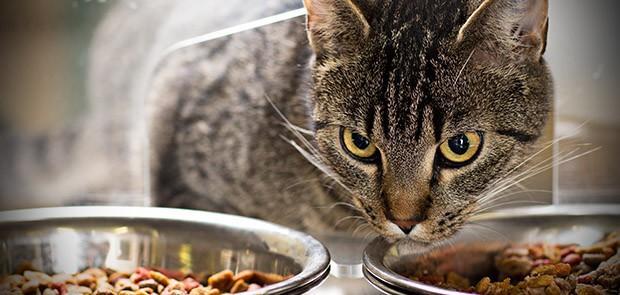 Palatants
Palatants
3+ MIN
10/06/2021
Beyond Consumpyion - Measuring Cat's Food Enjoyment - Research and development AFB Intenational
Typical cat food palatability assessments consist of either: Preference trials: A two-bowl trial measuring consumption when given two options. The first bowl approached, first food tasted, amount consumed, and intake ratio are used to measure preference. Acceptance trials: A one-bowl trial that generally only measures the amount consumed. While these common trial methods are valuable in assessing preference and palatability, AFB International sought to determine other ways to evaluate cat food enjoyment, as well as develop methods that would be representative of what pet parents might experience at home. Trials conducted at AFB's Palatability Assessment Resource Center (PARC) found behavior methods can augment consumption data in preference and acceptance trials to provide additional insight to a cat's feeding experience. FOOD FOCUS - Nose in BowlSM (NIB) Trial Purpose: Measure cat's interest in food and help distinguish products with similar consumption Approach: Sixteen individual cats were fed four diets over four days in acceptance trials. Video- recordings aided in using food focus to distinguish preference between diets. Food focus, defined as the time spent eating, sniffing, and engaged with their food, was quantified versus time distracted. High food focus indicated palatable food and high enjoyment. Low food focus indicated the cat was distracted while eating, which could be related to palatability. Results: As shown in Chart 1, three diets had similar consumption, but diet A had significantly higher food focus. This indicates diet A was enjoyed more than C or D. And while diet B also had high focus, the proportion of food consumed was much less than the other diets. This could indicate the cat had difficulty biting or chewing the food, and may provide insight to pet food manufacturers on where to focus product improvements. WORK EFFORT - Puzzle Trials Purpose: Measure effort cats are willing to exert for treats, as well as mimic the effort cats are expected to 'perform' for treats at home. Approach: Puzzles presented obstacles between the cat and treats. Sixteen individual cats were offered two puzzles, each with a different commercialized cat treat dispersed throughout. As the cat consumed treats from one puzzle (Treat A), it became more difficult to find and reach the remainder of Treat A, but easier to find and reach Treat B in the other puzzle. The trial completed when each cat consumed 50% of total treats offered. Treats consumed (Treat A vs. Treat B) were quantified and indicated preference. Results: This measure aids in distinguishing differences between cat treats. Chart 2 illustrates that despite the cats needing to exert less effort to obtain Treat B, the cats persisted in choosing Treat A - the more palatable option. INTERACTION - Hand-Feeding Trials Purpose: Evaluate a food's ability to entice cats into the lap of their pet parent and prolong interaction after the food is gone. Approach: Sixteen individual cats were offered, by hand, commercialized paste treats encouraging close contact during feeding. Development of enticement and interaction scales intends to interpret treat preference and enjoyment in future trials. Preliminary Results: All treats enticed most cats to the greatest behavior measure – sitting in a technician's lap (Chart 3). The interaction scale (Chart 4) suggested the more a cat enjoyed the treat, the longer he allowed interaction (petting), even when no more food was offered. Brand C Tuna influenced cats to interact the longest, suggesting the interaction scale can differentiate products. Conclusions Behavior trials with kibble, dry treats and paste treats demonstrated additional ways to assess palatability and food enjoyment beyond consumption to describe an additional dimension of the cat's feeding experience. Behavior and enjoyment data can augment consumption data to help pet food manufacturers develop products that provide more interaction between pet parents and their cats, and the assurance they are offering their cat a food they enjoy, not just eat. To learn more about Applied Behavior Research, contact Susan Jojola. By: AFB Intenational
 Conveying Systems
Conveying Systems
1+ MIN
09/06/2021
E-finity® Pneumatic Conveying System is Designed for Stability and Reliability
Precise pressure monitoring and airflow corrections allow the system to operate efficiently under all conditions, while gently inducing materials through the convey line in slug form. E-finity® is ideally suited for granular and pelleted materials, and has proven itself on many pet food manufacturing applications. Unique E-finity® air controls can employ a single air source to operate 2-3 different systems simultaneously. The result is a significant cost savings in both equipment and installation, with continued savings in operation and maintenance moving forward. Schenck Process' ability to design, size, sell, fabricate, and integrate other OEM processes as well as installing and providing ongoing support delivers full control. As a primary equipment manufacturer, Schenck Process manages production schedules for faster lead times on highly engineered, custom-built systems. The end result is a predictable, efficient, and effective material handling process. Contact Schenck Process to schedule a full-scale test to quantify the energy requirements and degradation results for your specific products. By: Schenck Process
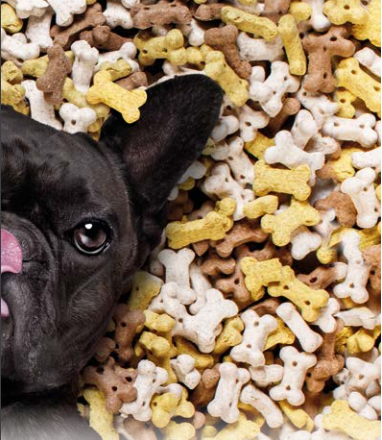 Palatants
Palatants
5+ MIN
08/06/2021
Is it possible to Control and Predetermine the Palatability in Pet Food?
Palatability is also a set of observations that pet parents make during feeding times and are mainly related to the speed of consumption, gestures of satisfaction and eating completely the offered ration. But also Palatability is a technical attribute of the product, which can be controlled through the correct calibration of the production system and the selection of ingredients. To better understand this, it is necessary to first define what palatability is in general terms and in technical terms. General definition of Palatability: it is the ability of a food to generate attractiveness in dogs or cats as a result of the activation of their senses and the stimulation of the impulse to feed, it is closely related to the smell and taste of the food, but also to its shape and texture. Technical Palatability: is the result of a palatability test on a trained panel of pets. The panel must meet numerous size, training, and lifestyle requirements to be considered calibrated. The test must follow a pre-established and proven protocol that is robust for data generation. Finally, the test data must be processed by a suitable statistical method to obtain a numerical conclusion of the result. The two protocols most used today to measure palatability are the versus test and the monadic test. The versus test consists of offering two dishes simultaneously to the pet for a specified time, each with a different food and allowing the pet to freely choose which one they prefer. The monadic test is offered a single food for a certain time and the pet is allowed to consume it freely. The monodic test mainly indicates the level of consumption of a food, it is more related to the natural way of feeding pets in homes, but it has a relatively low discriminatory power between two specific foods, or in other words, to If there is a significant difference between two foods in a monadic test, their difference in palatability should be quite noticeable. The versus test, on the other hand, mainly indicates a preference, it has a very high discrimination power, allowing even very well-trained panels to detect very subtle differences between two foods, such as small changes in the formulation. While the monadic test is recommended to evaluate whether a food is consumed at adequate levels by a pet and meets certain nutritional requirements, the versus test is more appropriate when deciding whether between two options there is one that is better for pets In this way, it allows us to decide, for example, between two types of cereals, two types of fat or two different cooking temperatures. Now, back to the title of the article, we will answer each of the questions asked. First, if it is possible to control palatability, because there is a standardized and protocolized measurement tool, the versus test or a monadic test. Second, it is also possible to predetermine or preset palatability levels in a set of foods, this is achieved by evaluating the response of various production parameters, formulation and doses of certain key components in the product. An order or staggering of palatability can then be established in a portfolio of brands, thus, for example, more palatability can be granted to premium brands and moderate levels to economic ones. The response to specific products can also be differentiated, for example, by making a product for small breeds more palatable than its counterpart for large breeds. But how is this achieved on a practical level? The first step is to measure palatability in a research center prepared for it. In general, the versus protocol is recommended to detect small differences between two options, which can be two competitors in the same market segment, two different formulas for the same product, or a prototype product in development versus an established one. This will establish the baseline on which to plan the levels and modifications. The second step is to guarantee a basal level of palatability as high as possible, working on the texture of the kibble, the quality and type of raw materials used in its formulation and a number of key parameters during the manufacturing process. This will not leave as an element of differentiation between various types of products, mainly the type of external application of fats and flavorings. An example of key parameters to control to maximize kibble attractiveness is as follows: Once we have the main process points under control and we ensure an optimal kibble, we must define levels of external fat coverage and liquid and / or powder flavoring to differentiate the products in each market segment. The objective is always to adjust to the nutritional profile of the food, but to try to place the greatest amount of fat externally, which is where it can be most appreciated by the taste and olfactory senses of the pets. Regarding flavorings, higher doses should be chosen for products of greater relevance in the portfolio, the premium brands. It is also possible to select from the market a variety of flavoring options of different "strength" or different levels of palatability. The level of palatability of a flavoring is determined by its ingredients and its manufacturing process, and what finally gives the positioning is a palatability test, it is generally accepted that to consider a flavoring as belonging to a higher level than another determined, the most powerful one must obtain a statistically significant favorable result compared to another, applied in the same doses and in the same croquettes. Example table of doses of fats and flavorings: The same concept applies to fats and to finished products in general. When defining the palatability level of two fats, a palatability test is performed between both ingredients, both applied in the same dose on the same batch of dry kibble and under the same conditions, with which the only different factor is fat. That ingredient that achieves a statistically significant result over the other can be considered as having a higher level of palatability. By applying this same experimental design to the test of two finished products, the palatability level of each can be established. To avoid sample selection biases, it is recommended to choose both products in the market by randomly choosing the point of purchase. It is not valid to compare a pilot prototype with a product on the market. Another key factor is the freshness of both products, where it is recommended that they do not differ in the 30 days of manufacture to consider the same age. In summary, although palatability is a complex concept that is fundamentally a sensory, biological response, therefore, to a food. There is accumulated even scientific evidence and practical experience that indicate ways to rationalize and model this concept at very specific points in the manufacture and formulation of a product with the aim of achieving predetermined effects. Fuente: Juan Manuel Peralta
 Cats
Cats
4+ MIN
04/06/2021
Feline Hyperthyroidism: What is the influence of the food?
Hyperthyroidism is the most common feline endocrine disorder today, and is a major cause of mortality in middle-aged cats in the United States, Canada, the United Kingdom, continental Europe, Australia, New Zealand, and Japan. In 98% of the cases of cats with hyperthyroidism, the enlargement of the thyroid gland is the result of a non-cancerous tumor also known as an adenoma. When the thyroid gland becomes enlarged, it can speed up its process and produce more thyroxine, which is the hormone known as T4. For the proper functioning of the entire endocrine system, this hormone must be properly regulated. 95% of cats have benign adenomas, and present with changes in the thyroid gland at the time of diagnosis. In about 70% of hyperthyroid cats, both lobes of the thyroid are enlarged. Feline hyperthyroidism was first documented in 1979 in New York and 1980 in Boston. Since that time, several studies have documented increases in the feline population around the world, for example: • In North America, it went from 0.3% in 1979 to 4.5% in 1985. • In Germany, it went from 0.2% in 1987-1994 to 2.6% in 1998. The risk factors currently being analyzed fall into two categories: Nutritional deficiencies or excesses in cat food, leading to thyroid dysfunction. Compounds that alter the thyroid, present in the environment or water. Causes of feline hyperthyroidism Currently there are many theories that try to explain the causes of hyperthyroidism in cats and the exponential increase of this disease in animals older than 10 years of age. The studies carried out have detected certain components as possible causes: • Several studies found that there is a greater chance of developing the disease when cats have been fed a lot of canned food. Specifically, a higher incidence of hyperthyroidism was found in cats fed canned giblets in their formula, that is, with organ meats or meat by-products. • Studies showed that BPA (bisphenol A) and other similar compounds, found in the walls of cans, can transfer to food and thus cause toxicity. Despite the results of these investigations, the FDA stated that it finds that the amount of chemicals that can leak into food is unlikely to be high enough to cause illness. • Another study suggested that flame retardant chemicals known as PBDEs (polybrominated diphenyl ethers) may be a determining factor in feline hyperthyroidism. The authors make this claim because they found that PBDEs began to be used around the same time as the first discovered and documented case of hyperthyroidism in cats. Furthermore, the rate of feline hyperthyroidism has been similar to that of PBDE use in other countries. In any case, the sample that was analyzed is too small to be taken as a statistic. It was also hypothesized that the main route of exposure to PBDEs were from items such as carpets, upholstery and mattresses, and since cats often spend a lot of time in these places, the exposure could be high and prolonged. This may also explain why hyperthyroidism is more common in cats that live indoors. However, the most interesting thing about this study for our industry is that PBDE was found in cat food. Elevated levels of PBDEs were found in canned foods, especially those based on fish or shellfish (which is consistent with the relationship with canned foods mentioned above). Likewise, high levels of PBDEs were also found in some dry cat foods. • Another study tends to determine the cause of feline hyperthyroidism in the amount of iodine found in many foods. The problem with iodine is that the minimum intake is known, but not the healthy maximum. In addition, it is not yet known, since the analysis of this chemical is very expensive, but it could be that excess iodine affected cats as well as humans, causing hyperthyroidism. What diet is considered the most appropriate for feline hyperthyroidism? In contrast to other results Mark E. Peterson, veterinarian and recognized researcher, affirms that the food for cats with this disease is better if it is canned, and it should have high-quality protein and low content of carbohydrates and phosphates: Proteins and carbohydrates Dr. Peterson, along with Dr. Eirmann recommend, for cats with hyperthyroidism, foods with 40% protein, since a consequence of the disease is sarcopenia due to age-related changes and increased metabolism caused by hyperthyroidism. In addition, as older cats find it difficult to digest proteins, it is important that they be of animal origin and easily digestible. They also recommend foods with carbohydrates below 15% to help stabilize blood glucose levels to prevent diabetes. Iodine restriction Iodine increases the production of thyroxine, so a treatment option for feline hyperthyroidism from food is the restriction or reduction of iodine. Iodine levels in foods for hyperthyroid cats should be limited to 0.32 ppm or less. Today, the best known food sold as 'ultra low iodine' is Hill's Pet Nutrition. The company claims that this food, if given exclusively, will normalize a hyperthyroid cat's hormone levels within 3 weeks. Conclusion Despite the paucity of studies and accurate results, there is currently a wide range of treatment options for hyperthyroidism. From our side, as we know that diet can play an important role in controlling the disease, we must continue to develop safe and healthy products for this portion of the feline population that, unfortunately, is growing every day. Source: All Pet Food
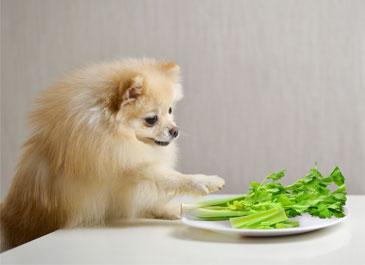 Trends
Trends
2+ MIN
01/06/2021
Plant-Based Ingredients - A growing Trend
The trend towards plant-based ingredients in pet food has increased enormously. If they are sustainably sourced and produced, and are adding nutritional value, they will be the key for future pet food. Innova's research Studies by Innova Market Insights show growing consumer demand for the integration of plant-based ingredients in human food. Interest in plant-based eating has been developing for some time, resulting in positioning it as one of Innova's Top Trends for 2021. Human food trends are driving the development of plant-based ingredients in pet food too. Plant-based ingredients in Pet Food Pet food manufacturers and brands must act to meet consumers demand but face some challenges. Plantbased pet food cannot compromise taste and must maintain good nutritional value. Ideally, one adds ingredients with a lower carbon footprint to reduce the environmental impact of the pet food. Finding a partner is important to optimise plant-based pet food. Duynie Ingredients has strong partnerships with many European pet food manufacturers to work together to integrate more sustainable plant-based ingredients into pet food manufacturing. In response to the growing demand for plant-based ingredients and for sustainability in the market, the company built a state-of-the-art plant in the Netherlands, where high quality and custom-made plant-based ingredients for pet food are produced. Locally sourced co-products All wet incoming products are locally sourced coproducts from the food industry. Co-products are released during processing of crops into food and beverages, like chicory pulp, potato cuttings and sidestream potato starch. Vegetables, like carrot pieces, which are not used for human consumption, may also be used. These co-products are dried with residual heat and green electricity instead of fossil energy. Keep up the nutritional value Pet owners are looking for plant-based pet food that will boost immunity. Ingredients with immune benefits like vitamins, minerals and a prebiotic function are favoured. Vegetable ingredients play a key role because they are a good source of fibre, minerals and vitamins. Chicory ingredients are important to add because of the prebiotic effect of inulin. Pet owners also often prefer pet food that is gluten-free. That is why adding potato ingredients is popular in pet food. Being Europe's largest producer of potato ingredients, Duynie Ingredients can offer all kinds of variations to use in recipes. Moving towards more plant-based pet food is a challenge that pet food manufacturers need to face. Luckily there are many sustainable and healthy ingredient options to choose from. Source: Duynie
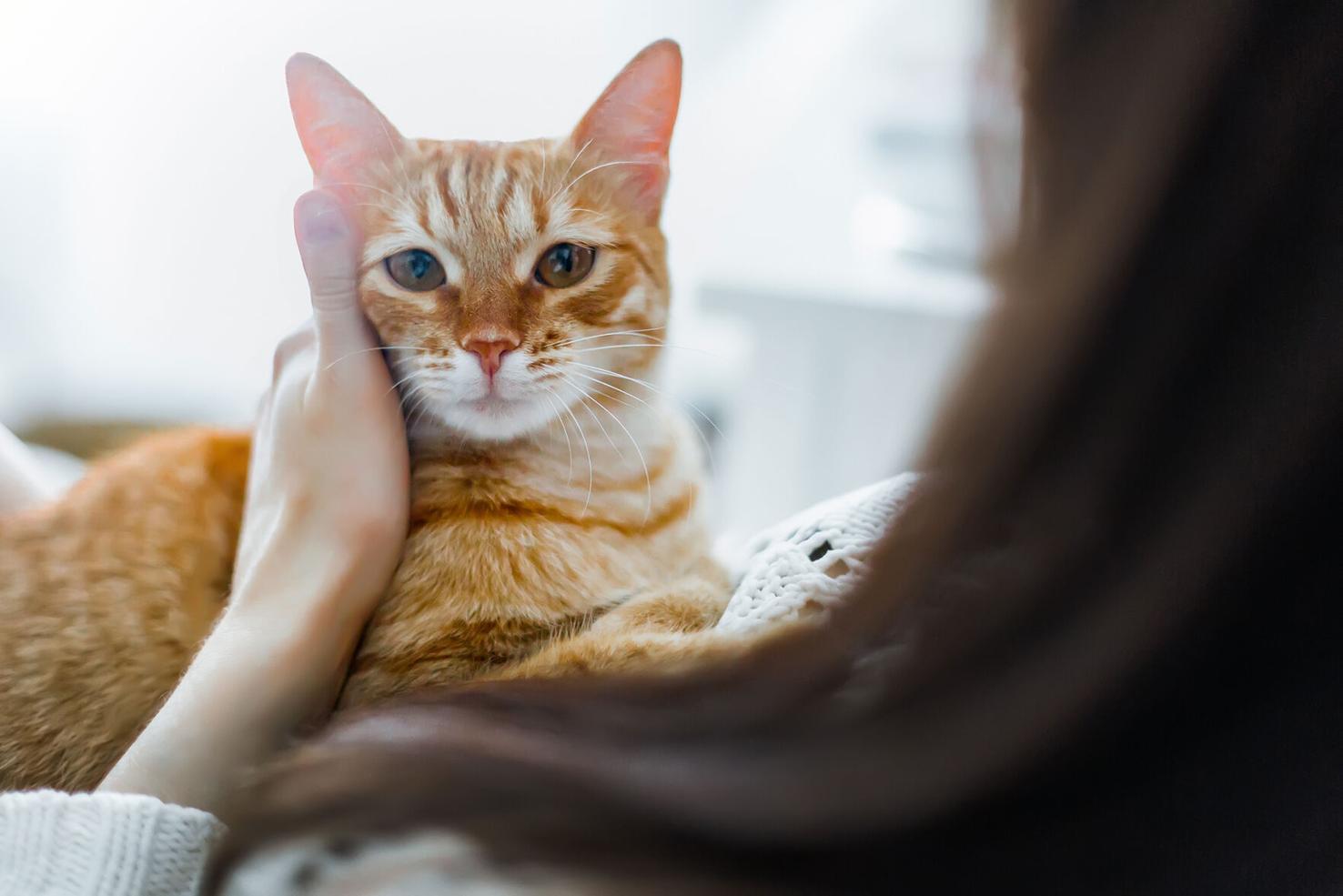 Market Information
Market Information
7+ MIN
31/05/2021
How Cat Food and Treat Selection Is Changing
The demand for made in the USA consumables with U.S. ingredients is climbing among cat owners. Pet owners are increasingly embracing products that are made in the USA, particularly when it comes to what they are feeding their pets, according to industry insiders. ''Made in USA' resonates in pet treats as a checks and balances for safety and trusted manufacturing processes with strong AAFCO (Association of American Feed Control Officials) oversights,' said Glenn Novotny, President and CEO of Emerald Pet Products, a manufacturer in Walnut Creek, Calif. 'Overall, there is a big focus with pet parents to ensure they are choosing products for their companions that are manufactured in trusted and safe facilities that meet the high USA standards of manufacturing.' While talk of made in the USA products tend to be more centered on dogs, cat owners are just as eager - if not more so depending on whom you ask - to focus their buying decisions on this factor. 'Innovation seems to be heavily focused on dog products, with cat not having as much focus,' Novotny said. 'At Emerald Pet, we see some of our most devoted fans and strongest growth in the cat category.' Chelsea Sher, Vice President of marketing and export at Evanger's Dog & Cat Food Co., a manufacturer in Markham, Ill., said she has more cat-owning customers asking where the Evanger's line of cat food is sourced and made than dog owners. (Both are sourced and made in the U.S.) "Customers are even asking about the type of fish used in certain products, such as whether it's a bottom feeder or other type", Holly Sher, President of Evanger's, added. "Cat owners are definitely tuned in, they both" said. Brian Bouldin, CEO of Primetime Petz, a manufacturer in Rockwall, Texas, expects the feline sector to continue to grow as customers become more discerning about their pet food. 'This consumer group is demanding a higher-quality product with nutrition supplements to specifically address cat-specific health issues, such as digestive and urinary problems,' Bouldin said. At Treats Unleashed, a retailer with stores in Missouri and Kansas, 'made in USA' has always been a selling point for products, said Teresa Miller, owner and founder. 'Customers want to know what they are feeding their pets and where it is made,' Miller said. Merrie Morris, co-owner of Tail Waggin' PetStop, a retailer in Kansas City, Mo., has had a slightly different experience. 'While we don't consider our store a 'boutique,' most folks recognize from our location and atmosphere that we focus on quality products,' Morris said. 'Our customers are more focused on quality than on specific geographic origins. So, we rarely have a customer request products that are made in America. Interestingly, many of our customers are young professionals, and I've read that for that demographic, 'made in America' is not as important as other traits such as eco-friendly, fair trade and high quality.' Spotlight on Sourcing "Whether a product is made in the USA isn't the only factor cat owners are considering when selecting a pet food. Educated pet owners also want to know where the ingredients are sourced," Miller said. Mel Abernathy, vice president of sales at Primetime Petz, agreed. 'There is an increasing number of discerning cat owners who are well read in this regard,' Abernathy said. 'Ingredient panels are of greater importance to consumers, and suppliers adapting their package messaging to 'U.S. Sourced Ingredients' is evidence of this.' Primetime Petz takes measures to ensure consumer awareness. 'U.S.-farmed protein is and will remain a call-out on packaging,' Bouldin said. 'Point-of-sale video and print sales collateral will be an advertising initiative moving forward.' Emerald Pet Products also puts the message center stage. 'At Emerald Pet, we specifically call out 'Made in USA with U.S. Ingredients' on our label,' Novotny said. 'We find retailers are typically aware of our U.S.-sourced ingredients, but consumers have been trained to just look for a 'Made in the USA' statement. Retailers have the opportunity to educate customers on products made in the USA with U.S. ingredients by engaging in-store.' Indeed, Miller takes advantage of this opportunity to educate pet owners at Treats Unleashed stores. 'Cat owners make decisions based on our recommendations but also on our staff's in-depth knowledge and ability to share information about sourcing and the companies behind the products we carry,' Miller said. At Tail Waggin' PetStop, sourcing may be on the consumer's radar, but it is not as high as some other considerations, according to Morris. 'For cat owners specifically, the two traits that are most important are taste—because cats tend to be more finicky than dogs—and healthy ingredients, i.e., grain free, low in ash,' Morris said. 'If we can assure them the product meets their needs in those areas, sourcing is significantly less important". 'However,' Morris continued, 'we are based in the Midwest and our customers love products made in the Midwest—it's definitely a selling point. The closer the product is to 'locally made,' the better, while products made on the coasts hold no more or less appeal than products made in other countries. I don't think the love of Midwest products relates to quality as much as keeping the money in the local economy and simply love of home.' Evanger's Dog & Cat Food Co. gets 95 percent of its raw materials from within 50 miles of its manufacturing facility, Chelsea Sher said. 'That's what 'made in USA' means to us - keeping it local,' she added. When asked why pet owners and retailers should consider the importance and/or benefits of sourcing ingredients in the U.S., Novotny replied, 'Just like manufacturing in the U.S., sourcing ingredients in the USA ensures they have met high standards during quality control and have undergone micro testing at time of production and during storage. You have to put in high-quality ingredients to produce high-quality products.' Abernathy had a similar sentiment. 'U.S.-sourced ingredients are more traceable and have regulatory entities that are more trusted by consumers'. On the Market - Functional Features Manufacturers are launching new U.S.-made food and treats for cats, and they're targeting specific health needs. At press time, Emerald Pet Products was gearing up to introduce its newest cat product, Emerald Pet Feline Dental Stixx, with shipping set to begin in April. 'Our innovative new dental treats in a stick form remove tartar and plaque through chewing action while also massaging the gums for proper dental hygiene,' said Glenn Novotny, President and CEO of Emerald Pet Products in Walnut Creek, Calif. 'They are made in the USA with U.S. ingredients, and all four recipes include pumpkin to aid digestion.' Emerald Pet Feline Dental Stixx is available in Chicken, Salmon, Tuna and Catnip. New to market is EVx Restricted Diet Dinners for Cats from Evanger's Dog & Cat Food Co. in Markham, Ill. The line, which is made in the U.S., is formulated to focus on cats' most common health issues, such as weight management, aging, joint health, kidney disease, pancreatitis, urinary tract health and digestive disorders - all while still offering an affordable price point for cat owners seeking solutions, according to Holly Sher, president of Evanger's. All EVx Restricted Diet Dinners include Alltech NVGEN, a proprietary blend of supplemental ingredients for 'feeding the gastrointestinal tract for healthy aging,' according to Evanger's. Primetime Petz in Rockwall, Texas, offers freeze-dried nutrition for cats. The Hauspanther freeze-dried line gives cats the protein they crave in a convenient and easy-to-serve form, according to company officials. The single-ingredient cat treats are available in Chicken Liver, Beef Liver and Turkey Heart. The meal toppers, which include daily support supplements, are available in Chicken, Beef and Elk & Venison. Products are made in the U.S. with U.S.-sourced meat, according to officials. On the Shelf: Is There Enough Selection? The demand for U.S.-sourced ingredients in cat food and treat products may be increasing, but are manufacturers keeping up? Teresa Miller, owner and founder of Treats Unleashed, a retailer with stores in Missouri and Kansas, said there have been some difficulties in this regard. 'We do have challenges finding treats sourced and made in the USA, so we've had to broaden our range,' Miller said. 'We definitely have a segment of customers that limit their purchases to only made in the USA, so having more options would be beneficial to our store and our customers.' Most of the canned cat food that Tail Waggin' PetStop carries is from Thailand, according to Merrie Morris, co-owner of the Kansas City, Mo.-based store. 'We make a point to say that Thailand has a huge - and very reputable - food processing industry and, more to the point, it is not China,' Morris added. Verification of sourcing claims has also proven to be a challenge for some retailers. 'Recently, we've seen transparency regarding sourcing decline in a couple of our current vendor partners,' Miller said. 'Manufacturers that rely on companies to source their ingredients and can't confirm country of origin are eliminated from our assortment.' By: Pet Products News
 Dogs
Dogs
4+ MIN
28/05/2021
Does Food affect the mood of Dogs?
We know that what is fed to animals influences their physical health; but the concept that diet also affects mental health and behavior is often overlooked. However, nutrition is the fuel for the body and the brain, which is why, indeed, it has a leading role in animal mental health. In this article we analyze how diet and different nutrients impact the behavior and mood of pets. The functioning of the brain Nutrition impacts every cell and metabolic process in the body. Just as a car cannot function without gasoline or gas, the brain and nervous system cannot function without the necessary components. All the activities and functions of the body are directed and connected by networks of neurons (nerve cells). If neurons cannot 'communicate' with each other in an optimal way, their networks will be affected and consequently their behavior will suffer as well. In this sense, we must recognize that all behavior is a direct manifestation of activity in the brain and central nervous system. The behavioral outcome is secondary to the underlying mood, emotion, and motivation. The truth is that most studies and research in animals are carried out in order to analyze the presence, prevention or absence of physical diseases, not mental or behavioral. Scientific studies on pet food and the functioning of the animal brain. It is often said that the intestine is the second brain of human beings, but what is true in this statement if we transfer it to pets? It remains to be seen. A thesis carried out in 2009 for the University of Wageningen focused on analyzing and evaluating the impact of feeding on two physiological systems involved in the regulation of canine behavior. Dietary fiber and canine behavior The potential impact of dietary fiber on satiety and behavior in dogs was evaluated. To do this, two in vitro fermentation studies were conducted to analyze microbial fermentation activity in the canine gastrointestinal tract from two diets with different fiber fermentability. Some results: It was found that the secretion of hormones related to satiety did not differ between the two treatment groups. Dogs fed a diet high in fermentable fiber showed less motivation or desire to eat 6 hours after their morning feed ration and, in turn, less activity, compared to dogs fed a diet low in fermentable fiber. Dogs in both treatment groups did not differ in their level of response to short-term activities performed between 5 and 7 hours after the morning meal. It was concluded that the type of dietary fiber used in the food can have an impact on canine behavior in terms of their levels of motivation. However, metabolites related to satiety have not been affected by the type of dietary fiber, indicating that other mechanisms were also involved in the feeling of satiety. Tryptophan and the mood of animals The second analysis carried out was about the essential amino acid tryptophan, which is the precursor to the neurotransmitter serotonin in the brain, which is involved in mood, stress, and behavior. Tryptophan supplementation has previously been shown to reduce anxiety in rats and increase resilience in stressed pigs. To translate the study into dogs, tests and analyzes were performed on a group of anxious dogs; participating pets consumed foods with different levels of tryptophan for 8 weeks. It was found that: Intake of food with a higher level of tryptophan increased plasma tryptophan by 37.4% and its proportion with neutral amino acids by 31.2%. However, the data provided by the owners of these dogs do not provide a significant change in the behavior of dogs that can be attributed to the particular dietary treatment. The diet high in tryptophan and low in protein presented improvements in behavior, especially a reduction towards aggressive behavior to mark territory and improved behavior related to fear, attachment, attention and sensitivity to pain. Other studies... It has been shown that behavior and mood in rats, pigs and humans can be affected by certain nutrients. The physical activity of pigs has been influenced by the type of dietary fiber, probably due to satiety after eating. Fermentable fibers were assumed to be able to stimulate several mechanisms involved in the maintenance of satiety, including stimulation of the secretion of satiety-related metabolites in the gastrointestinal tract. Enrichment of dog diets with antioxidants and mitochondrial cofactors has been found to reduce the rate of age-related cognitive decline and associated behavioral changes. The inclusion of soy-based ingredients in pet food for dogs resulted in the presence of active phytoestrogens that influence anxious behavior in Rats, and impair the social behavior of monkeys. Studies that focused on the effects of the experimental decrease in tryptophan availability showed that, as there was a deficit of this amino acid, there was an increase in aggressive behavior and a decrease in mood. Conclusion The old saying "we are what we eat" is certainly wise and this also applies to dogs and all pets. Unfortunately, to date, there is very limited research in the area of how certain specific nutrients affect the brains and behavior of dogs. We trust that, as animal mental health becomes more recognized by both the industry and its owners, the studies and analyzes already carried out will be deepened in order to offer the best possible food and nutrition. By: All Pet Food
 Palatants
Palatants
1+ MIN
27/05/2021
Cat food: How to make the most palatable kibbles
Palatable, attractive, tasty, appetizing, pleasant, delightful… No matter the word you pick to describe the perfect cat food, what really counts is this: will Kitty eat it?! So if you want to make sure cats will feast on your kibbles, you need to consider some key factors such as type of palatants, kibble protein content, and moisture level.. Discover the golden rules to formulate a dry food that cats will love. Continue reading on appetizerblog.com
 Manufacturers
Manufacturers
3+ MIN
27/05/2021
Construction on Nestlé Purina PetCare U$D 550 million Factory hits six-month mark
It's been eight months since Nestlé Purina PetCare announced that it would build a U$D 550 million factory at South Afton Industrial Park in Williamsburg, and construction on the project is moving along. The new factory will be part of Purina's network of 21 existing manufacturing locations across the United States, and it will be the company's first new factory built from the ground up since 1975, according to an earlier press release announcing the project. Purina's South Afton Industrial Park factory is planned to be 1.2 million square feet and will produce dry dog and cat food, including Purina Pro Plan, Purina ONE and Dog Chow. According to the press release, Purina's new operations will be designed with sustainability at the forefront, including a commitment to send zero waste for disposal, and production processes designed to recover and reuse heat and water. Purina also plans to make the factory 100 percent powered by renewable electricity in the 'shortest practical timeframe,' while supporting the company's ambition for zero environmental impact in company operations by 2030. Construction on the facility began last fall, and the factory is expected to be operational in 2023. Recently, Purina spokesperson Tiffany Gildehaus provided an update on the project's build. She said that following mass earthwork at the beginning of 2021, foundation pouring began in March, and the first precast wall was constructed in April. She added that steel will begin emerging this summer and building construction will ramp up this fall. 'This factory will be one of Purina's most technologically advanced, utilizing robotics and innovative digital tools to connect employees and produce its pet food recipes. To support employee training and career progression, the factory will feature one of the first Nestlé Purina Training Universities,' she added. More than 300 people will be employed at the factory, according to Purina, with jobs that include professional staff, production operators, technical staff and engineers. With months of work put in at the project site, Purina Director of Sustainable Operations Gopi Sandhu spoke positively about working within the local community. 'It's been exciting to watch all the progress the team has made over the last six months. There is a very dedicated group of associates and partners working tirelessly to bring this new factory to life, and our interactions with the local community have been positive – they share our enthusiasm and eagerness to officially make this factory operational. We are grateful to be able to expand our operations into Clermont County, and soon have more than 300 associates call it home,' Sandhu said in an email interview. County and local officials have been working together to entice Nestle Purina Petcare Company to South Afton Commerce Park. During its regular session on Sept. 30, 2020 the Clermont County Board of County Commissioners approved an Ohio Enterprise Zone Agreement by and between the Board of Trustees of Williamsburg Township, the Board of Commissioners of Clermont County and Nestle Purina Petcare Company. Per the agreement, Nestle Purina Petcare Company, with main offices located in St. Louis, Missouri, will be given a 100 percent tax exemption for 15 years for the increase in assessed valuation of real property constituting the agreed project site. The exemptions would need to be taken advantage of starting no later than tax year 2025, and do not extend beyond tax year 2039. Now, several months into the project, Clermont County Board of County Commissioners President Claire Corcoran said that it's gratifying to see the hard work of those who took action to bring solid jobs to Clermont County. 'We now see the beginning of the production of tangible results. We're pleased to see progress on the Nestle Purina plant, a facility that will create jobs for years to come,' Corcoran said in an email interview. 'It stirs the imagination to see the factory taking shape in South Afton Industrial Park along State Route 32 at the eastern entrance to Clermont County. You can get an early picture in your mind of the state-of-the-art facility that will help Clermont County continue to thrive in years ahead. It's truly exciting to see things coming together as planned.' By: The Clermont Sun
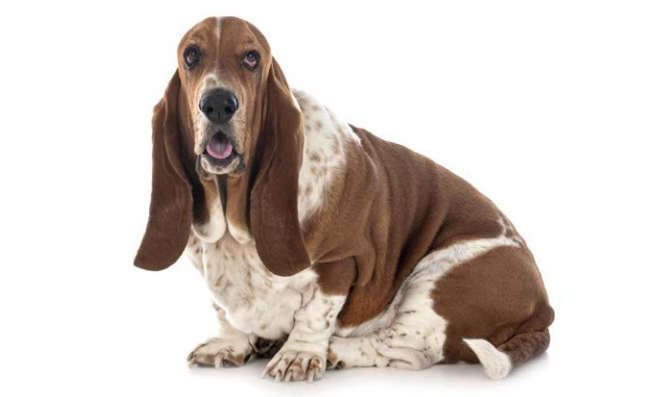 Dogs
Dogs
4+ MIN
21/05/2021
What is the role of Pet Food in canine obesity?
Obesity in Dogs is a recurring theme in veterinary consultations, and various factors can lead to an overweight animal. In this article we discuss the role of pet food in obesity and what we can do to help solve this problem. Obesity in dogs In a study conducted by APOP in the United States in 2015, it was found that approximately 54% of American dogs were overweight or obese. However, of this percentage, 95% of overweight dog owners believed they were at a healthy weight. This gives us an indicator from the beginning about why more than half of the canines in a population are overweight: the owners deny it or are misinformed. There is no doubt that the balanced food that is chosen for the pet will have an impact and responsibility in the development of overweight. Now, what, specifically, is the degree of responsibility that the pet food industry has to assume? How much influence the decisions or behaviors of the owners? How to recognize and draw the line between responsibility for food and genetic load? The pandemic has significantly affected everyone's daily life, including that of pets; Their routines, eating habits, and activity levels have all changed, so it is not surprising that canine obesity continues to increase, and even at a dizzying rate. Of a group of vets surveyed, more than 71% say the pandemic has affected the way pets are fed. Demonization of pet food as the guilty of canine obesity The studies and research that we will discuss below show that the fact that a dog becomes overweight greatly exceeds the quality or nutritional value of the balanced food that is provided. However, there is still a certain 'demonization' towards food and it is taken as the main and only cause of the animal's obesity. For example, foods high in fresh meat tend to be very nutrient-dense, meaning that less is more nourishing. Generally, owners ignore this data due to confusion or misinformation, and this is how they overfeed it. Meat by-products present a similar situation: they are, many times, considered waste by pet owners. And yet, they are the most nutritious for dogs and cats. What is the relationship between eating patterns and canine obesity? In November 2020, the Kelton Global company carried out an investigation on how eating patterns influence obesity in dogs. The study was conducted with 1,021 dog and cat owners and 257 from the United States. Canine obesity rates are increasing and there is no question about that. In order to determine what the trigger is, it is necessary to acquire a greater understanding about eating patterns to later be able to combat the problem. The study examined the relationship between dietary patterns and caloric intake and nutrients in selected foods. To do this, they collected surveys about lifestyle, feeding frequencies, and 3-day food records were requested from both the pet and the owner. The results of the study show that: • Significant differences were found in total kcal intake per kilogram of body weight. • Lean dogs received significantly more dietary fiber compared to overweight dogs, regardless of the number of snacks they were given. • Statistically significant differences were observed in the cases of higher concentrations of polyunsaturated fat and lower concentrations of saturated fat. • Dietary fiber in dog food was positively associated with protein and negatively associated with accumulated fat, regardless of the dog's weight. So a high fiber diet is associated with dogs with a healthy weight. Patterns in humans, obesity in dogs The study showed that the behavior of humans, even those that have nothing to do with their pets, impacts the health and weight of animals: • Dogs that receive 'leftover' pieces of food from the owner that reach 21% of their daily intake were shown to be more likely to be overweight. • Pet owners who participated in the sample and who had diets with high levels of micronutrients and with lower caloric density had dogs of healthy weights with no signs of developing obesity. • Statistically significant differences were observed in the cases in which the owners had diets with high concentrations of polyunsaturated fats and lower concentrations of saturated fats. • Those of dogs with a healthy weight had a diet richer in nutrients than the owners of overweight dogs. • 59% of overweight dog owners were overweight or obese. The study shows that, beyond the food that is provided to the dog, the behavior patterns of its owner can positively or negatively affect its health and body weight. Other related studies • A 2009 study found high concentrations of triglycerides and cholesterol in obese dogs, suggesting metabolic disturbances in obesity. • Another more recent study examined the effects of weight-loss diets and found that high-fiber and high-protein diets provided significantly more satiety than high-volume protein-only or fiber-only diets. • Recent research has shown that the increasing rate of canine obesity has led to an increase in the rate of osteoarthritis, insulin resistance and certain neoplasms. In conclusion Yes, Pet Food definitely plays a role in Pet obesity, but as we've discussed, not in the way that many owners and even veterinarians believe. Fighting canine obesity requires better education with scientifically sound information about the true nutritional needs of dogs and cats and the various ways to meet them. For our part, we believe that we must work to improve the understanding of the nutritional and caloric information labels and of the best practices regarding the intake or use of the food in question. Marking and explaining well the difference in how to provide a super-premium, standard, or extra protein food will be essential to provide and disseminate greater and better education about the health and weight of animals. Will this be the year that, as an industry, we innovate in addressing pet obesity more proactively? We read you! Source: All Pet Food
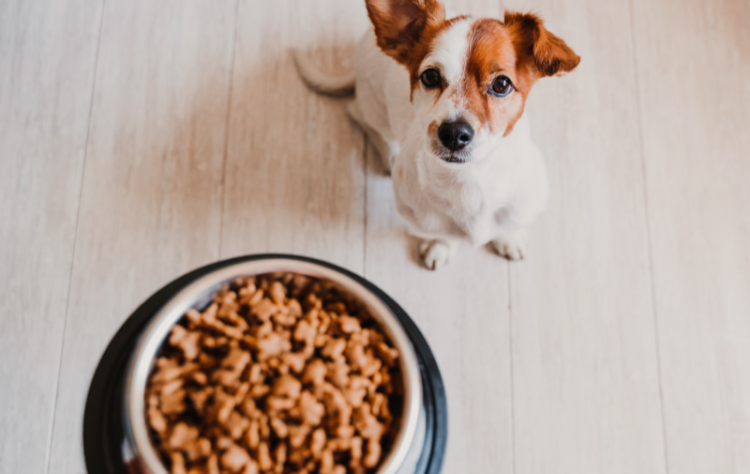 Market Information
Market Information
2+ MIN
19/05/2021
Five valuable components in product development
The development process of a new pet food product is just like in other industries. At the same time, it has some very specific features. Let us consider them in detail. Today's buyer's needs Nowadays, the product development team must understand what a buyer wants if it is to meet demand. But the pet food industry works simultaneously for two target audiences: the pet parent and their pet. A product's composition, appearance and cost, trust in the manufacturer, plus the health, beauty and longevity of the pet are important to the buyer. Most people do not read and analyse the composition of their own food as meticulously as that of their pet's. But if the pet does not like it, nothing else matters. So palatability plays a crucial role. R&D teams are constantly working on this, trying to invent the best formula for the product. Taste is influenced by several factors, including recipe, ingredient freshness, chemical reactions caused by synergy between ingredients, density and kibble shape. Market potential The use of meat such as pork, rabbit and horse needs to be researched, as these ingredients are traditionally well received in some markets but not in others. Production technology choices Again, this factor affects both target audiences. For the buyer, the type of product, conformity to competitive offers on the market, degree of processing and preservation of useful substances are important. For pets, products with a similar formula, but manufactured using other technologies, may have different palatability. Environmental impact Alternative proteins, like insect and vegetable proteins, or attempts to culture artificial 'meat' proteins, significantly reduce the negative impact on the environment, when compared to traditional meat proteins. Recycled packaging, and attempts to reduce the use of packaging in general, also have a significant impact and meet consumer needs. The pet industry makes substantial progress with these topics. Soul food The R&D team at Kormotech is not just creating a good quality product. What is the most inspiring for them is giving it 'soul', making it more than just food. So that the customer gets positive feelings from being in a harmonious relationship with their pet. And they will buy your product again. Source: Global Pets
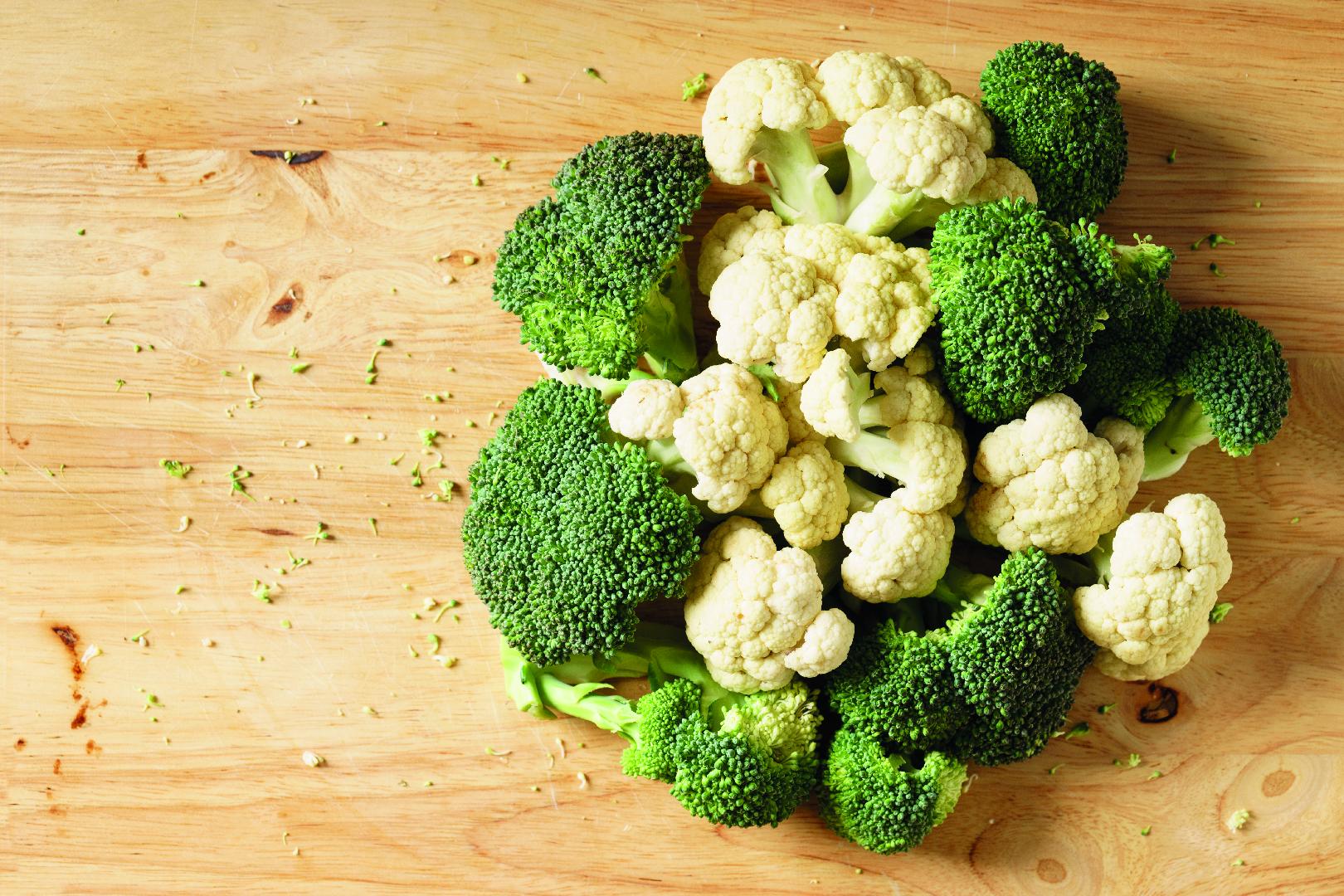 Vegetable Origin
Vegetable Origin
4+ MIN
18/05/2021
Cruciferous vegetables in Pet Food formulas
Pet food manufacturers are in a constant bid to find the best formula: the healthiest, the tastiest, the most convenient ... In this article, we discuss cruciferous vegetables that are incorporated into Pet Food formulas in search of a healthier food. First: what vegetables are cruciferous? Cruciferous vegetables are the vegetables of the Brassicaceae family, a family of dicotyledonous angiosperms made up of a monophyletic group with 372 genera and 4,060 accepted species. The best known and most consumed are cauliflower, kale, cabbage, watercress, broccoli and Brussels cabbage, among others. Vegetables in the cruciferous family are known as "super vegetables": they contain vitamins, fibers and phytochemicals that help the human immune system fight disease. In fact, it is recommended for human consumption several times a week. Now, as we have already seen in previous articles that everything that is imposed on humans is imposed, sooner rather than later, in the lifestyle of pets, and this trend is no exception: the consumption of vegetables and the replacement of animal meat is on the rise. Are cruciferous vegetables also good for Pets? The answer is yes: the vegetables in this family are healthy, safe and nutritious to include in pet food formulas. Broccoli, for example, is packed with fiber, which helps with digestion and weight control; It contains many vitamins (A, B, C, D, E and K) that help promote the general well-being of the animal and lutein, a nutrient that promotes eye and cardiovascular health. What's more: Cabbage, for its part, is the one with the highest amount of vitamin A. Brussels sprouts and broccoli contain high levels of folic acid and omega-3s. Brussels sprouts have the highest amount of vitamin A, C, K and B complex vitamins. Kale is high in fiber, vitamin K and E, iron, calcium, potassium, magnesium, and antioxidants. 'You have to follow the advice of the grandmother: everything in moderation! Crucifers are warrior vegetables that prevent cancer; Dogs should not be denied the benefits of indole-3-carbinol found in these foods, but they should be used in moderation, and the crucifers should be made from organic soils to avoid contamination with thallium by environmental pollutants. " Dr. Karen Becker, expert in Comprehensive Veterinary Medicine Benefits of incorporating cruciferous vegetables into the Pet Food formula • Prevention of oxidative stress: Thanks to the antioxidants in these vegetables, oxidative stress in pets can be reduced or prevented, which occurs when there is an imbalance of free radicals and antioxidants in the animal's body. Free radicals are unstable molecules with an odd number of electrons. We could say that they are a natural "by-product" of the daily processes of the body's functioning, although they are also caused by environmental toxins such as pollution and smoke. To try to stabilize, free radicals interact with other molecules, which can damage proteins, DNA, and other cells. • Carotenoid intake: Carotenoids are plant pigments rich in antioxidants that protect dogs from free radicals. Kale, for example, contains three main carotenoids: lutein, zeaxanthin, and beta-carotene, a provitamin A carotenoid, that is, it converts into vitamin A upon entering a dog's body, and benefits the skin, coat, and endings muscular and nervous. Lutein and zeaxanthin are beneficial to the health of the retina of the eye, and related research claims that they help prevent age-related macular degeneration (AMD), cataracts, and diabetic retinopathy, among other conditions. Studies show that lutein and zeaxanthin improve cardiovascular health. Lutein and zeaxanthin also help increase levels of glutathione, an antioxidant produced in canine cells that is involved in detoxifying the liver. In fact, low glutathione can cause up to 45% of liver disease in dogs. This antioxidant participates in various processes, such as stress, aging, and protection against environmental toxins, and cannot be easily replaced. • Intake of flavonoids: like carotenoids, flavonoids are plant pigments found in fruits and vegetables. They are powerful antioxidants and anti-inflammatories, with the two most common being quercetin and kaempferol. Quercetin is known for its ability to fight allergies, because it is also an antihistamine. For its part, kaempferol helps reduce inflammation, improves cardiovascular health, protects the brain, and controls diabetes. Both flavonoids also protect against cancer. 'Kale is rich in some minerals that, compared to AAFCO or FEDIAF standards, are in short supply in many meat-based diets. So the choice often comes down to using moderate amounts of kale and similar vegetables, finding other foods that provide the minerals, adding mineral supplements, or having a diet that may be deficient in some important minerals. Mineral-rich vegetables reduce the amount of supplements we need to add to meet standards. " Steve Brown, expert in Pet Nutrition. Sumary Vegetables are once again making their way into pet food. In this case, we can affirm that the incorporation of cruciferous vegetables into pet food formulas for dogs is positive; However, certain precautions must be taken, such as, for example, that the vegetables are grown in organic soils or that they do not exceed 10% of what the animal's diet will be. It will be crucial to deepen the research and tests in our sector of the industry to be able to include the right measure of these vegetables with total safety in the pet food formulas that are committed to healthy, nourished animals and at the forefront of what their human owners seek. Did you know all the benefits of these vegetables? Let us know! Source: All Pet Food
 Market Information
Market Information
1+ MIN
17/05/2021
PreConnect by Pet Fair SEA’ lets internationally-oriented brands explore new export markets virtually.
May 1, 2021 - Bangkok Pet Fair South East Asia's virtual event 'PreConnect' is back from June 24-25, 2021. Extended to two days for its second edition, 'PreConnect' once again serves the mission to provide export-oriented pet brands with a virtual bridge into South East Asia's booming pet markets. Exhibitors will be able to connect with SE Asia-based Importers, Distributors and Retailers seeking for new partners in their respective growth markets. PreConnect serves as the ideal market test opportunity for brands newly arriving to SE ASIA ahead of the live tradeshow show Pet Fair SEA in Bangkok, Thailand in 2022. The first PreConnect Event in October 2020, successfully united 57 brands and manufacturers with over 500 pet industry buyers. Almost 50% of the visitors were SE ASIA-based Importers & Distributors seeking for new partnerships in their respective markets. Companies interested in participating can enquire for more information via
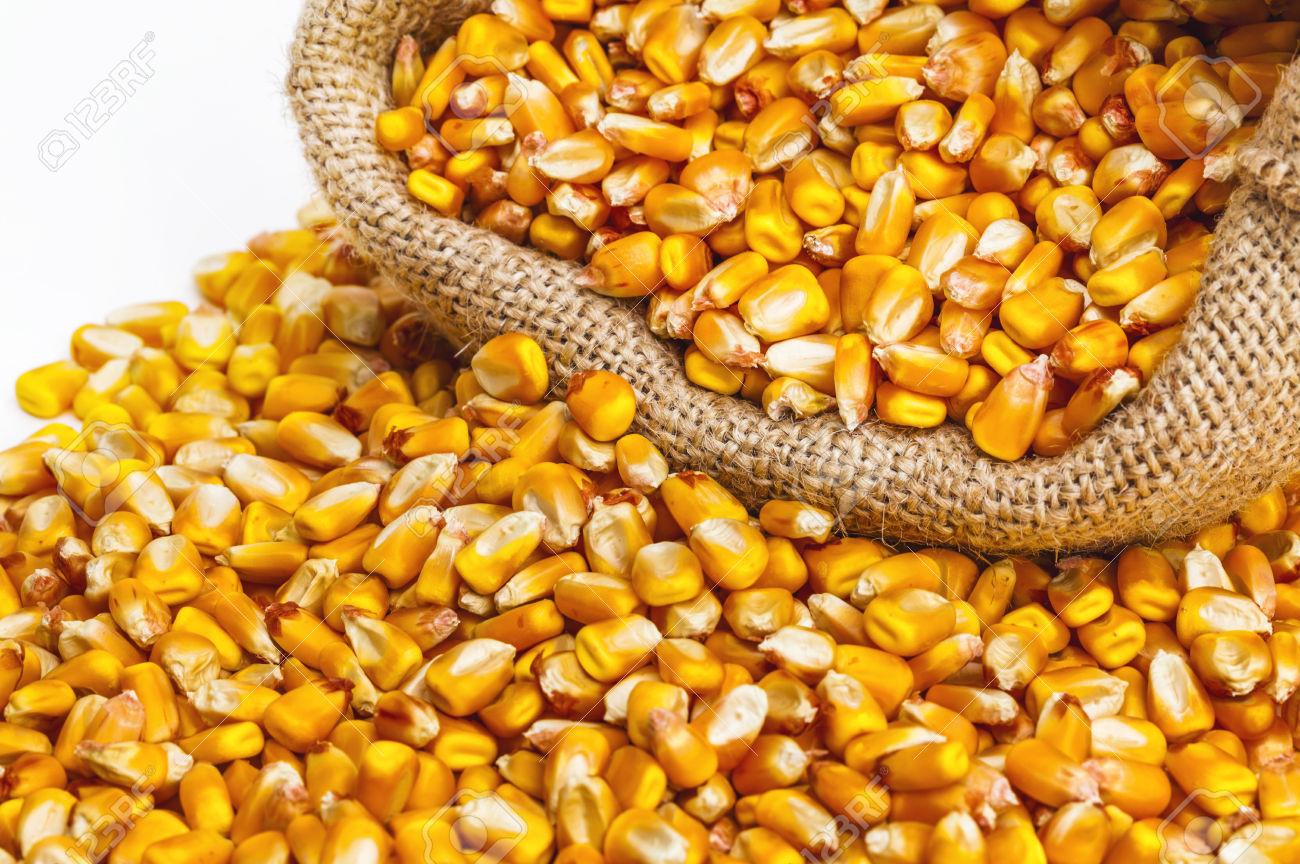 Market Information
Market Information
3+ MIN
14/05/2021
Increase in cost of raw materials and its influence on Pet Food
The increase in the cost of raw materials during the first four months of this year has represented a great challenge for the entire animal feed industry. This collaboration will not talk about the effects that this has caused to the animal production sector and as a consequence of human feeding, but specifically to the Pet Food Industry. With the start of the Covid 19 pandemic in China and its coincidence with the occurrence of sanitary problems in the pig herd in that country, during the first months of 2020, there was a decrease in the production of pork and its derivatives in that country. Subsequently, with the pandemic already installed worldwide, outbreaks of Covid 19 emerged in meat packers both in Europe, specifically in Germany and in the United States, which led to the temporary closure of several of these businesses with the subsequent generation of shortages of flours and fats. of animal origin that immediately caused an increase in their costs. Somehow this problem carried with it a hope of a medium-term solution, at least to the reopening of the meatpacking businesses and their subsequent regulation of the volumes of meat and fat produced. This solution was not achieved since during this year there is a consistent increase in the price of soybean paste that, far from regulating prices downward, has kept them expensive. In conclusion, as of today all the prices of raw materials that provide protein of both animal and vegetable origin remain at very high prices. Regarding grains, the news is not encouraging either; began a very aggressive upward race since the last four months of last year due to the mixture of many factors, among them the strong market demand, the low expectations of sowing and harvesting and the climatic problems experienced in the producing areas of these ingredients such as The United States, where it was very cold, and Brazil, where droughts occurred. Another factor that contributes to the upward situation is the recovery of the Chinese pig herd that has pushed this country to increase its demand for grains. In the end, there are very high ingredient costs in both grain sources and vegetable and animal protein sources, which has led to a consistent increase in the price of pet foods that are offered in the market. The increases observed in the Pet Food category in the Mexican market during 2021 have been on average between 15 and 20% to the final buyer. At the time of writing this document, we do not know for certain what the response will be in terms of market demand to these increases. According to data observed throughout 2020, market consumption trends, at least in this country, pointed to a greater demand for cheaper products; however, the Pet Food market continued to grow from previous years. 2021 is on its way and the only thing left for us is to continue carrying out commercial strategies, formulation and optimization of operating costs to make our pet food businesses more viable in this difficult environment. Source: Miguel A. López
 Ingredients
Ingredients
4+ MIN
13/05/2021
Pet food with hydrolyzed protein: benefits and challenges
In search of the healthiest food, development and innovation in the pet food industry continues to advance by leaps and bounds. In this article we talk about pet food formulas for dogs and cats that use hydrolyzed protein as a source of amino acids. What does the term "hydrolyzed protein" refer to? When it comes to carrying out a hydrolysis process with food protein, it is referred to chemically breaking down protein macromolecules with water into smaller pieces, so small that the immune system of the animal that consumes said food cannot detect it. The hydrolyzed protein feed is used in cases of animals with food allergies, inflammatory bowel diseases or exocrine pancreatic insufficiency or PID. As protein is a vital element in all balanced nutrition, it must be present in pet food formulas. If an animal's system reacts negatively (for the aforementioned conditions) to natural proteins, they can be nourished with hydrolyzed protein through degranulation of mast cells (which contain elevated levels of histamine and heparin, with influential role in inflammatory reactions) of the protein. Hydrolyzed protein especially for dogs can be incredibly beneficial for those with a food intolerance. In which cases do these diseases occur most frequently? Inflammatory bowel disease (IBD) can develop at any age, but is usually diagnosed in middle-aged to older dogs. Some dog breeds, such as the Boxer, German Shepherd, Labrador Retriever, Cocker Spaniel, Golden Retriever, German Shepherd, Shar Pei, and Poodle appear to be at higher genetically predisposed risk for contracting or developing IBD. What is the main purpose of hydrolyzing protein? The main objective of hydrolyzing proteins to create formulas for special diets is to sufficiently alter the structure of proteins to eliminate existing allergens and allergenic epitopes (portion of a macromolecule recognized by the immune system) and, consequently, prevent immune recognition and reaction allergic and / or inflammatory. How can the antigenicity of proteins be reduced? The antigenicity of a protein (ability of a substance to function as an antigen: to trigger an immune response), is determined by its primary structure, by its amino acid sequence, its secondary structure (local regular folding between nearby amino acid residues of the polypeptide chain ) and its tertiary structure (arrangement of the secondary structure of a polypeptide when folding on itself, causing a globular conformation). Reduction of antigenicity can be achieved in a number of ways: • Altering the three-dimensional structure of the protein (secondary and tertiary). • Altering the structure of amino acid side chains, such as the conjugation of amino acids with sugars or the oxidation of amino acids. • Generating the cleavage (division) between a water molecule and another macromolecule, that is, carrying out a hydrolysis process. Hydrolyzed protein diets Many of the food allergies identified in domestic animals include reactions to protein components in dry or canned food, and that these components have undergone heat treatment during manufacture. Consequently, it can be assumed that there is a significant amount of thermoset allergens, since the main effect of a heat treatment is to change the three-dimensional conformation of the protein. At the same time, it may also happen that other previously hidden allergenic determinants are discovered due to heat treatment. For example, another reaction that occurs at high temperatures is the Maillard Reaction, which involves reactions between certain amino acids and reducing sugars to produce compounds called melanoidins. Benefits of hydrolyzed protein • Increased digestibility: Hydrolysis in proteins makes it possible to produce components with a minimum digestibility of 90%, which is excellent for ensuring the nutritional potential of food for pets with hypersensitivity or eating conditions. Tests were conducted that evaluated the digestibility of chicken protein hydrolyzate in dogs and demonstrated 92% digestibility of crude protein. • Palatability: When the palatability of a feed is low, the little desire to eat it can affect the nutrition and health of the pet. Chicken Protein Hydrolyzate is a highly palatable ingredient with 15% free amino acids and bioactive peptides. • Composition rich in amino acids and high in protein: The choice of a quality raw material can guarantee the ideal levels of amino acids and proteins in the formula of a feed. The hydrolysis process ensures greater availability for absorption. Market Trend: Foods with hydrolyzed protein Purina Pro Plan Veterinary Diets HA: Dry food for dogs that presents a hydrolyzed vegetarian version and another based on hydrolyzed chicken protein. It has a high level of palatability and both versions have a great source of carbohydrates, especially for dogs with food intolerance. Royal Canin Veterinary for adult cats: Dry food for cats that favors the balance of the digestive system and creates a natural protective barrier for the skin to enhance skin health. Contains fatty acids and hydrolyzed protein with low molecular weight to reduce the risk of intolerance. Summary Although true food hypersensitivity is relatively uncommon in dogs and cats, it is an important differential diagnosis that is becoming more and more relevant every day. Given the ever-expanding range of proteins being discovered and introduced to the pet food market, hydrolyzed protein diets offer a convenient and proven option for the treatment of food hypersensitivities and other digestive and / or intestinal conditions. Currently, the studies and tests carried out are not enough to determine standard levels or what is the optimal degree of hydrolysis, because it probably differs according to the type of protein, the pathology of the animal and its general condition. The level of hydrolysis used today is very good in terms of palatability and nutritional quality, but there is no certainty that they do not contain any type of allergen. By: All Pet Food
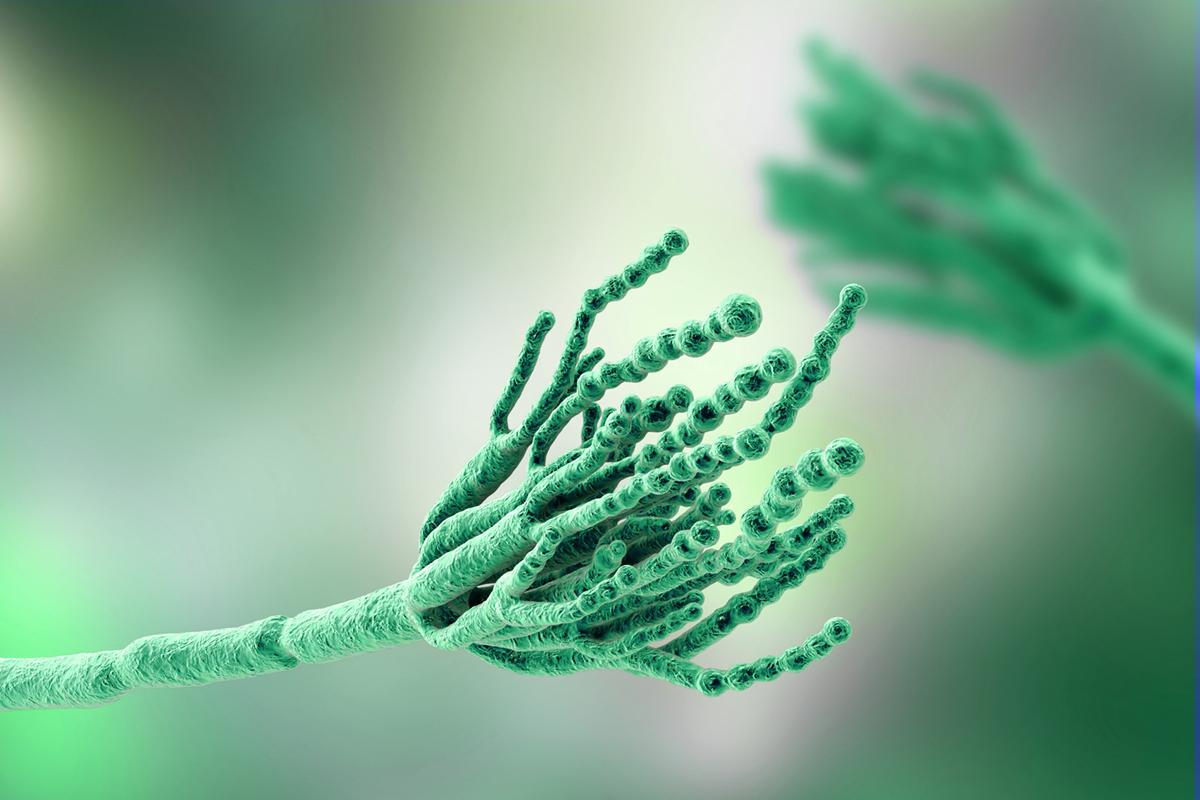 Vegetable Origin
Vegetable Origin
4+ MIN
11/05/2021
What are Microalgae and what are its benefits for Pets
The Pet Food Industry is in a boom and growth, due to all the changes and processes that speed up after 2020. Pet owners no longer want the cheapest food, on the contrary, they choose the food that provides increased nutrition, health and wellness to your best four-legged friends. In this article we will tell you what microalgae are, Pet Foods being used and benefits. What are microalgae? Microalgae are photosynthetic, polyphyletic and eukaryotic unicellular aquatic organisms, which can grow autotrophically (they synthesize all essential substances for their metabolism from inorganic substances and do not need other living beings) or heterotrophic (they feed on other carbon sources organic, mainly plant or animal matter). They are generally highly efficient in fixing CO2 (the conversion of inorganic carbon into organic compounds) and in using solar energy to produce biomass. They grow and develop in open pond or closed tank systems. What are they used for? Currently, microalgae are used mainly as additives, both in balanced food and in supplements or snacks in pet food for Dogs and Cats. What are the main benefits for Pet Food? Microalgae are a great source of protein, fatty acids, antioxidants, vitamins, minerals, and fiber. They contribute: Essential nutrients, such as proteins, fatty acids, antioxidants, vitamins, fiber and minerals (phosphorus, iron, zinc and magnesium, among others). Superior quality nutrition, as it is a natural product, free of metals, pesticides, microbes and other contaminants. An improvement in intestinal health: It is proven that microalgae improve intestinal health and activate the immune system of animals. An improvement in general health, since it increases oral hygiene and the shine and strength of the coat. For brain development, some microalgae burn macronutrients as a source of DHA (docosahexaenoic acid), which contributes to brain development. Its consumption in puppies, pregnant and lactating animals is essential. What are the most common Microalgae used in Pet Food? • Spirulina and Chlorella: These microalgae absorb light. They are currently used in supplements, treats, and whole foods for dogs and cats. Spirulina is very rich in nutrients, and it is said to improve the health of the skin and the immune system, although there are still no studies that have been carried out exclusively to testing this effect in dogs and cats. -In a study carried out in rats, it was found that, thanks to its intake (incorporated in 0.2 to 1.3% in dry food), the production of immunoglobulin A improved. Chlorella is considered to detoxify and purify the body systems of pets, although there is no scientific evidence on its effects yet. -In rodents, oral administration of a chlorella extract (between 0.9% and 2.8%) increased resistance against an intraperitoneal infection with Escherichia coli or Listeria. In addition, a small-scale study suggests that incorporating chlorella powder into dry food by 0.6% can reduce the consequences of canine dermatitis. Currently, products that contain microalgae in their formulas come in the form of: • Seaweed flakes, of different sizes and thicknesses, which are suitable for use in croquettes and chews. • Seaweed powder, an easily mixed powder used for granules and specialty products. • Seaweed paste, easily soluble and used in dry food or feed. • Small croquettes, easy to process once defrosted. Algae rich in DHA Green algae are characterized by having a higher percentage of DHA than other algae, such as Shizochytrium sp. The intake of Omega 3 EPA and DHA can improve atopic dermatitis and osteoarthritis and some indicators of modular immunity in dogs. -It was found that the inclusion of 0.4% DHA-rich algae in dry foods increases the apparent protein -A small-scale study with 3 dogs fed a diet that included 0.4% DHA-rich algae for 30 days showed that DHA produces beneficial changes in canine electroretinography. However, cognitive tests were performed with elderly dogs and the incorporation of 0.4% dehydrated whole cells of Schizochytrium sp in dry food did not show strong improvements. The composition of the microalgae most used in Pet Food Dried seaweed, oil and seaweed extract and meal are included in the European catalog of feed materials. Some approximate numbers of the composition of each can be given: • Spirulina and autotrophic chlorella contain 57% crude protein in dry matter, 11% crude fat, 8% ash, 6% crude fiber, and 18% soluble carbohydrates. Dried spirulina and chlorella contain about 1% chlorophylls and 0.1% carotenoids (although these numbers can vary widely). Both algae have a negligible content of EPA (eicosapentaenoic acid) and DHA, and have a high molecular weight polysaccharide, which comprises approximately 0.75% of the dry weight of microalgae; it differs in composition from a glycosyl group but shares the high solubility in water. • Spirulina also has 10% phycocyanin as a photosynthetic pigment and 2% GLA (gamma-linolenic acid), absent in chlorella. The soluble polysaccharides in spirulina are mainly glucose and rhamnose, but there are some differences between species. • Dried algae rich in DHA contain approximately 22% DHA, and less than 0.6% EPA. • For Schizochytrium sp, the heterotrophic DHA vehicle, the values are: 11% of crude protein in dry matter, 51% of crude fat, 9% of ash, 2% of crude fiber and 27% of soluble carbohydrates. Summary Currently, the use of microalgae in Latin America is much more widespread exclusively for human consumption, with Brazil being the country with the most companies producing food based on microalgae, followed by Mexico, Peru, Chile, Ecuador and Cuba. While studies and experiments continue to ensure the benefits of these components in Pets, we can prepare and make our own research and conclusions on how to take advantage of these discoveries and create new formulas with more nutrition and benefits to improve the quality of the Pet Food Industry. Source: All Pet Food
 Market Information
Market Information
2+ MIN
10/05/2021
Diana Pet Food reaches a New Certification in Food Safety for its site in Brazil
In March Diana Pet Food Brazil obtained the FSSC 22000 certificate, one of the most important certification in food safety management The Diana Pet Food plant located in Descalvado (San Pablo) is now certified with FSSC 22000; setting a new milestone for Diana Pet Food and reaffirming its commitment to food safety. FSSC 22000 is a food safety certification system developed by the Foundation for Food Safety Certification, and approved by the Global Food Safety Initiative (GFSI), thus achieving international recognition and reach. The GFSI organization was established in 2000 to collaborate with industry stakeholders and outlined benchmarks to focus on improving food safety systems. 'Thanks to this certification, Diana Pet Food reaffirms its commitment to food safety, and positions itself as a benchmark throughout the region, guaranteeing safer products, a more comprehensive and continuous management system, greater competitiveness and improvement in the supply chain management'. says Elaine Mapeli, QHE Regional Manager About Diana Pet Food Diana Pet Food is the global leader and pioneer of high value solutions improving pets' well-being and owners' satisfaction. The entity provides multiple products and services improving pet food palatability, pet health, and pet food protection. Diana Pet Food is present on five continents with 1090 employees, 18 industrial sites, 18 sales offices and 3 expert measurement centers with 860 cats and dogs. Diana Pet Food is part of Symrise Nutrition, which encompasses Diana Food, ADF/IDF and Diana Aqua as well as Probi. Within the Symrise Group - a global supplier of fragrances, flavors, food, nutrition and cosmetic ingredients - Symrise Nutrition leverages the Group capabilities to provide advanced natural health & well-being nutrition solutions for the human food, pet food and aquafeed industries. For more information visit By: Diana Pet Food
 Micro Ingredients
Micro Ingredients
5+ MIN
07/05/2021
Improving Pet Food digestibility with Yucca Schidigera
It has been estimated that pet owners spend U$D 300–500 or more every year on food alone for their Dogs and Cats. That may not seem significant, but add in all the other costs that come with owning a pet and the total spent per year reaches a high number pretty quickly - and that does not even include the many non-bank-account-related costs that can pile up. When it comes to determining the value of the food they feed their furry companions, Pet owners rarely consider overall Pet Food digestibility. Why is that value important? Well, Pet Food that is formulated with excess protein and/or poorly digestible micronutrients will not be used by the animal. This means that not only is the pet receiving a lower level of nutrition, but more waste is also being excreted by the animal, which has environmental implications. Improving Pet Food digestibility, however, does not need to be a challenge. One solution — Yucca Schidigera extract (YSE) — is known for both its health and environmental benefits. Let's dive in to how this additive can help improve your pet food company brand. Protein is a large player in Pet Food digestibility First things: Pet food digestibility refers to how much food is actually digested, used and absorbed by the animal. Higher digestibility values are desirable because this means that the pet is receiving a greater amount of nutrition from the bag of food, which translates to less poop and better health. Generally speaking, a digestibility of around 80% for is average pet food; anything below 75% is considered very poor-quality food, and anything above 80% is considered exceptional. To take this full-circle, this means that, on average, 20% of what's in the pet food bag will be excreted as waste by your dogs and cats. Protein is just one nutrient involved in digestibility, but when it comes to dogs and cats, it could be argued that protein receives the most attention. Many of us know that absorbing the proper levels of essential amino acids is crucial for good health, and since our pets typically eat the same things day in and day out, it is important that their protein requirements are met by their everyday diet. That being said, when it comes to protein, it is important to consider not only how digestible the source of the protein is but also what happens to protein once it has been ingested. Protein digestion in Dogs and Cats begins in the stomach with hydrochloric acid and pepsin, which break down protein into polypeptides. As the polypeptides travel to the small intestine, the pancreas is triggered to release more digestive enzymes, which break the polypeptides into tripeptides, dipeptides and single amino acids. These small peptides and amino acids are absorbed through the walls of the small intestine and travel to the liver, which distributes amino acids throughout the body. If there is an excessive amount of protein in the diet and not all of it can be digested, it will be excreted by the animal. Additionally, if there is an excess of amino acids in the liver, the body will begin to deaminate them or break them down into a carbon skeleton and ammonia. The ammonia will then enter the urea cycle and will eventually be excreted from the body in the form of urine. Overall, protein can be an expensive ingredient both in the bag and for the environment, which is why using additives to improve pet food digestibility may be a viable solution. Yucca Schidigera is rich in steroidal saponins The Yucca Schidigera plant is native to Mexico and has been used medicinally in various ways in both humans and animals for many years. Many of the yucca plant's effects are attributed to its various physiologically active compounds, such as steroidal saponins and polyphenols like resveratrol. Saponins are substances that foam up when added to water, which is why they are often added to soaps. When ingested in small quantities, it is thought that saponins have a 'scrubbing' effect on the mucous membranes of the GI tract, which can aid in the assimilation and absorption of nutrients. Saponins also have binding abilities; it has been suggested that they are able to bind to ammonia in a saponin-ammonia complex and pass through the GI tract unabsorbed and into the feces. While more research is needed to better understand these mechanisms, it is certainly an interesting solution for helping reduce ammonia concentrations and odor in feces and urine. Furthermore, polyphenols, especially in combination with steroidal saponins, have been shown to have anti-inflammatory, antibacterial and anti-protozoal properties, which indicates that using YSE in the treatment of arthritis and other inflammatory conditions could be beneficial. Yucca for Dogs and Cats Research in other production animal species has shown positive results associated with using YSE. In poultry houses, for example, the addition of YSE to diets has been shown to reduce fecal odor and ammonia excretion, and in broilers, YSE has been shown to increase feed efficiency, growth rates and survivability. Yucca schidigera supplementation has proven to be valuable for enhancing animal welfare conditions in cattle and pig production, as well. While our Pets are not being used in production settings, wouldn't it be great if there was a natural way to reduce their fecal odors? A study in dogs showed that including YSE in high-protein diets was effective for reducing ammonia concentrations and fecal odors compared to diets with no added YSE. In cats, studies have shown that applying the liquid form of YSE (as the product De-Odorase) directly to cat litter boxes can help eliminate litter box odor by up to 40% through its ability to reduce the levels of ammonia that have been excreted. Additionally, because of saponins' foaming properties, YSE may aid in the digestion and absorption of vitamins and minerals, which will also increase the effectiveness of your pet food and help reduce mineral excretion in the environment. Long-term use of Yucca for Cats and Dogs While more research is warranted, using Yucca Schidigera extract in Pet Food diets does appear to have positive effects in the gastrointestinal tract, contributing to increased digestibility levels of key nutrients like protein, vitamins and minerals. The impact of YSE may even go beyond the GI tract and offer anti-inflammatory benefits, especially in the joints. Increased Pet Food digestibility has important health, economic and environmental implications. While the increased absorption of nutrients will, of course, positively impact the health of companion animals, it also means that pet owners are receiving more value from the bags of food they are buying, which is always a selling point for your pet food brand. And perhaps most importantly during this era, any efforts to decrease ammonia and/or nutrient excretion could be key for environmental sustainability. At Alltech, we believe in working together for a Planet of Plenty. Our mission is healthier animals and a healthier environment, which is why we have taken measures to ensure that we meet the guidelines put in place by the Pet Sustainability Coalition. Protecting the environment is a worldwide feat, but we can certainly do our part in the pet food industry by considering alternative solutions, such as De-Odorase. By: Alltech
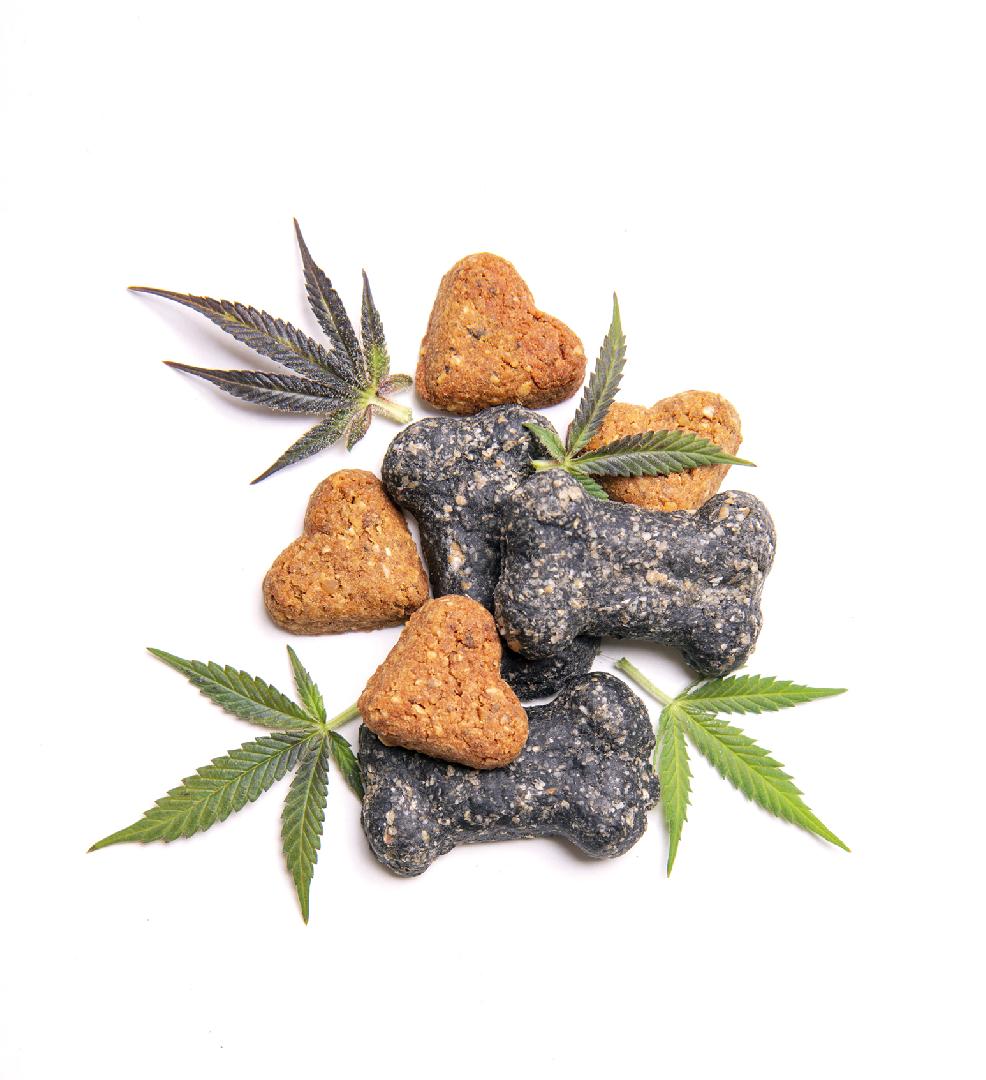 Trends
Trends
4+ MIN
06/05/2021
Cannabis for Pets? Recent Studies and What's Comming!
In 2020, the company Companion Sciences, which conducts various studies on the uses and effects of CBD, has completed the study it conducted on the relationship between CBD and glucosamine. The use of cannabis for animals is an area of growing interest, largely due to the therapeutic benefits seen in humans. During the last year, the consumption and demand for CBD snacks for both humans and pets has increased. Companion Sciences is an emerging company that is mainly dedicated to researching CBD and its real capacity to enhance the bioavailability (criterion that evaluates the rate and speed of absorption of a substance) of certain substances such as nutrients, nutraceuticals and supplements. Its mission is to make the world of CBD stop being seen as mere assumptions or savagery and begin to be based on validations and scientific evidence obtained from studies, analyzes and trials. The study on CBD and Pet Food This latest study, conducted in conjunction with the Ohio State University College of Veterinary Medicine, specifically focuses on the analysis of the tolerability and palatability of CBD in glucosamine-containing formulas. To do this, dogs with osteoarthritis were given a chewy snack with these components and carried out physical, blood and urine examinations. Study dogs (4-10 years old) were given the chews for a period of 42 days. At the end of the study, it was found that the chewy snack formula had achieved high levels of bioabsorption, including penetration into synovial fluid, the source of joint inflammation. What is the importance of these developments to the Pet Food industry? The truth is that, although there is still nothing concrete and no implementation can be carried out, these studies promise to provide new solutions and possibilities to offer to problems and diseases of pets, such as: Anti-inflammatory endometriosis: Companion Sciences states that it is waiting to patent a CBD formula with condensed tannins (polyflavonoids) with an anti-inflammatory effect caused by various gynecological problems such as canine pyometra. Anxiety: The company is studying the interactions between CBD and other cannabinoids with Linalool, a main component of lavender and other terpenes to enhance the entourage effect, that is, the way in which the different compounds in cannabis are synergized to produce a variety of actions in the body. Lavender, as is known, has several benefits for pets: it improves the quality of sleep, the appearance of the skin and relieves pain, among others. Studies on the clinical efficacy of CBD Another of the studies and trials conducted on the impact of CBD on pets focuses on dogs with refractory epilepsy. The study on epilepsy and CBD consisted of 16 dogs already diagnosed with refractory epilepsy. Nine randomized dogs formed the group to which the medication was administered (2.5 mg / kg of CBD oil every 12 hours) and 7 were part of the placebo group. For its part, the placebo group received an "oil" without active ingredient for 12 weeks. All dogs continued taking their anti-seizure medications. The conclusion of the study found that: 67% (6/9) of the dogs treated with medication reduced their average monthly seizures by more than 40%, while only 29% (2/7) of the dogs in the placebo group had a reduction of more than 40 % in average monthly seizures. Elevations of alkaline phosphatase (ALP) were recorded in 67% of the treatment group of dogs and only one dog in the control group. AED concentration in the treatment group decreased in 29% (2/7) of the dogs (29%) and increased in 71% (5/7) of the participating dogs. In the control group, the phenobarbital level decreased in 60% of the dogs (3/5) and increased in the remaining 40% (2/5). Now, how feasible is it that CBD can be incorporated into snack or supplement formulas for Pets? There is no doubt when it comes to affirming that CBD in the Pet World is in a moment of boom and popularity that has accelerated due to the confinements around the world to go through the pandemic caused by COVID-19; However, the same problematic spreads throughout the world: regulatory challenges and obstacles result in the production, marketing and sales of CBD pet products being a struggle with legality (at least for now). In the United States, for example, three hemp seed products were approved for use in 2018: hulled hemp seed, hemp seed protein powder, and hemp seed oil. However, none of these products contain CBD or THC and, as of yet, the FDA has not approved the use of CBD in any Pet Product. After its latest study, Companion Sciences plans to launch a clinical trial on the safety and efficacy of its use in dogs with osteoarthritis. The trial will be conducted with various formulas that combine CBD with other nutrients and compounds that have already been shown to enhance healthy joint mobility. Thus, the company will seek to demonstrate how CBD products increase the bioavailability of these beneficial substances for pets with this disease. With a little downwind, we can begin to think about legislation that allows the commercialization of this new component, and we can include it in the list of formulas for snacks and supplements designed for pets with this particular need. By: All Pet Food
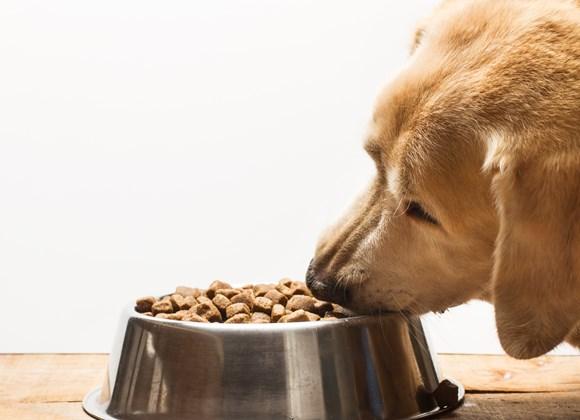 Ingredients
Ingredients
3+ MIN
04/05/2021
These are the best Natural Ingredients for Dog Food
Pet food trends are likely to follow human food trends. Sustainability and health have been prominent issues for a while now. Dog owners are therefore more likely to demand healthy and natural dog food for their beloved pets. Of course, the same goes for other animals, such as cats and rodents. But what are suitable natural ingredients for pet food? And why is sustainability in pet food important? Find out in this article. Natural Ingredients for a sustainable Planet Climate change is becoming an increasingly important issue. This raises the question of how we produce our food. Of course, this does not stop at human food. There are millions of dogs in the world and they need to be fed on a daily basis. Where does their food come from? Minimizing food waste is important. It is therefore recommended to choose ingredients that reduce environmental impact. Do not choose ingredients that are grown specifically for pet food. Use leftovers instead, also called by-products or co-products. Potato peels or bits of carrots are perfectly healthy choices for pet food. This nutritious food would otherwise be thrown away, but now has a brand-new purpose. That is twice as sustainable than using new vegetables that are grown for this purpose. Plant-based ingredients versus Meat ingredients Plants have considerably less impact on the earth than meat. Plant-based ingredients are therefore a sustainable choice for dog food. Still, some pet owners might argue that dogs are carnivores and that they need meat protein. Is a plant-based diet healthy for these animals? Studies have shown that a plant-based diet is a perfectly healthy choice for dogs, as long as this diet is balanced and complete. It is important they include all the right proteins, fats, vitamins and minerals. This makes it extra important to choose the right kind of ingredients. No artificial or second-grade vegetables, but healthy food full of fibres and vitamins. Such as potatoes, carrots and chicory. Pet food with these ingredients can be labelled as quality dog food that is both healthy and natural. What are the Best Natural Ingredients for Dog Food? It is clear that plant-based ingredients are a good choice for dog food and pet food in general. But which ingredients do you choose? There are plenty of ingredients to choose from for both wet dog food and dry dog food. Potatoes are both a healthy and a practical choice. For instance, it improves the texture of pet food during pelletization and extrusion processes. It also provides structure properties in kibble and wet pet foods. There is plenty of versatility within this food group: you can choose from potato flakes, potato fibres or potato starch. Potato starch is a universal binder and thickener for pet food. You can also opt for a variety of fruits and vegetables, such as carrot, spinach powder or pumpkin flakes. Both potatoes and vegetables are gluten and GMO-free and very suitable for grain-free pet food. Each of these ingredients contain the vitamins and fibres that an animal needs. Of course, you can combine multiple ingredients to create a unique and even more complete pet food. Duynie Ingredients: expert at natural ingredients for Dog Food Are you looking for natural ingredients for dry Dog Food? Duynie Ingredients is your partner in this field. Our pet food ingredients are 100% sustainable and of high quality. You can make various pet foods with our wide range of ingredients. Got any special requests? Contact our experts, we are happy to customize the ingredients for you! Source: Duynie Ingredientes
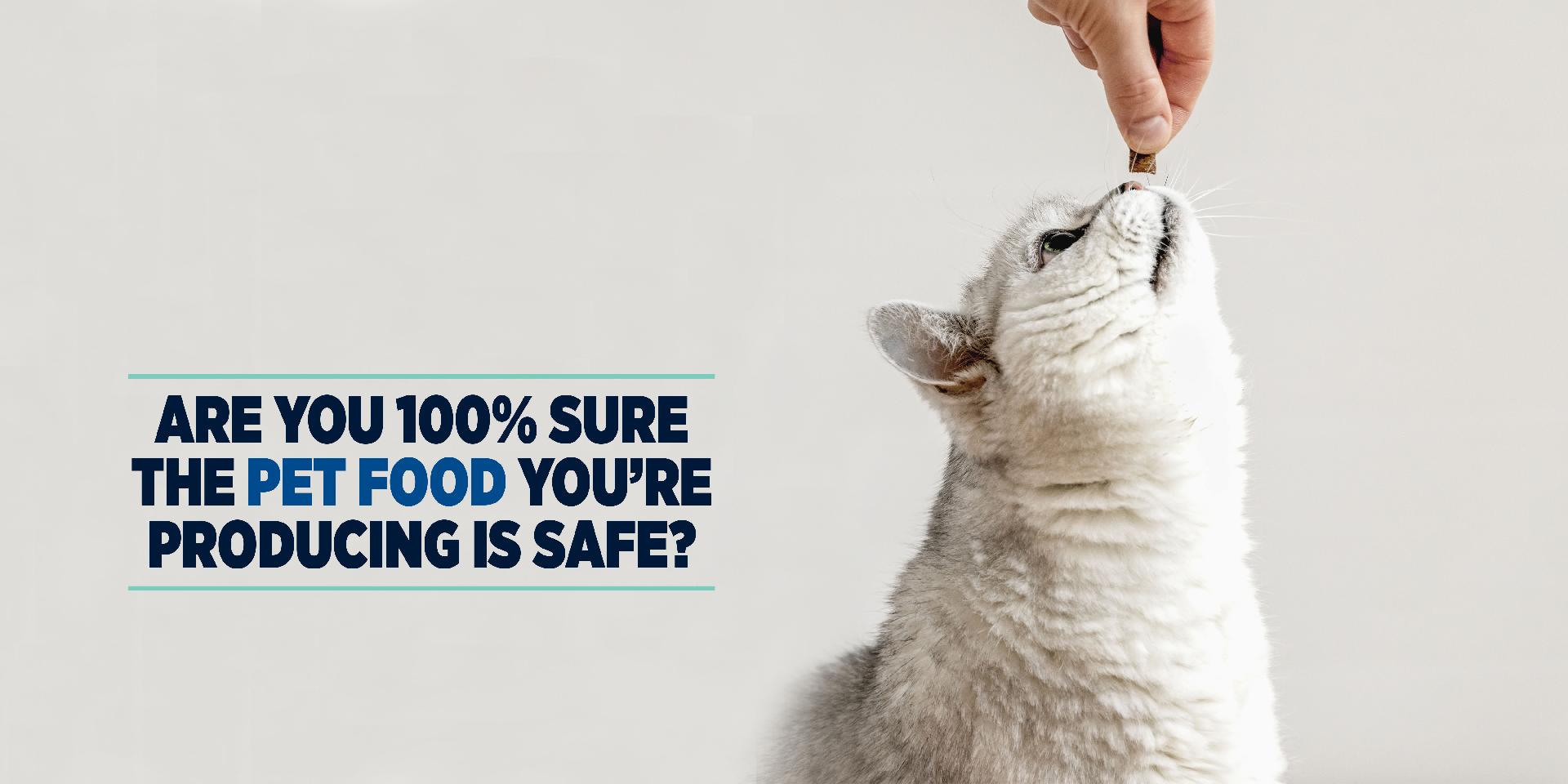 Market Information
Market Information
2+ MIN
30/04/2021
TOMRA Food Publishes New E-BOOK FOR Pet Food Processors and Ingredients Suppliers
Free-to-download publication identifies the three big threats to pet food safety and product quality, and spotlights how technologies new to the pet food industry can counteract these. Leuven, Belgium, April 20, 2021 – TOMRA Food has published an eBook to help pet food processors and ingredients suppliers counteract the threats posed by aflatoxin, foreign materials, and cross-contamination. The six-page publication explains how many businesses could be doing more to ensure their production standards, protect their customers' reputations, and safeguard their customers' beloved pets. The new eBook starts by asking: 'Are you 100% sure the pet food you're producing is safe?' This is a topical question just months after global news stories reported that more than one hundred dogs in the U.S.A. had died after consuming a well-known brand of pet food contaminated with the naturally-occurring poison aflatoxin. Soon after this, routine sample-testing for aflatoxin in dog foods led the U.S. Food and Drug Administration to instruct 18 pet food brands to recall their products. And as the eBook warns, 'If safety failings can happen on this scale in the world's most sophisticated consumer market, they can happen in any nation where pet food is produced.' The three big threats to pet food safety and quality are widely prevalent. Potentially lethal aflatoxins can originate in fungus in plants such as corn, peanuts and tree nuts that are used as pet food ingredients. Foreign materials can too easily get into the product stream during the rendering of by-products and the preparation of other pet food ingredients. And dry kibbles can easily become cross-contaminated when processors switch, as some frequently do, from one product batch to the next. In addition to the need to ensure food safety, flawless product quality is also imperative. The eBook spotlights how global demand for high-quality pet food increases as pet owners in developing nations begin to earn more disposable income and shoppers in developed nations drive the premiumization of pet food containing near-human-grade ingredients. This is an opportunity for pet food producers because premium products command premium prices. The eBook explains that new technologies are making these market demands easier to meet. This is because TOMRA Food recently introduced advanced optical sorting solutions to the pet food industry and the renderers of by-products from animal ingredients. This has been made possible by recalibrating machines previously designed and developed to ensure the purity of foods for human consumption - machines capable not only of detecting-and-ejecting materials from product streams according to their color, size, and shape, but also according to their structure and biological characteristics. New eBook can be downloaded free of charge HERE By: TOMRA Food
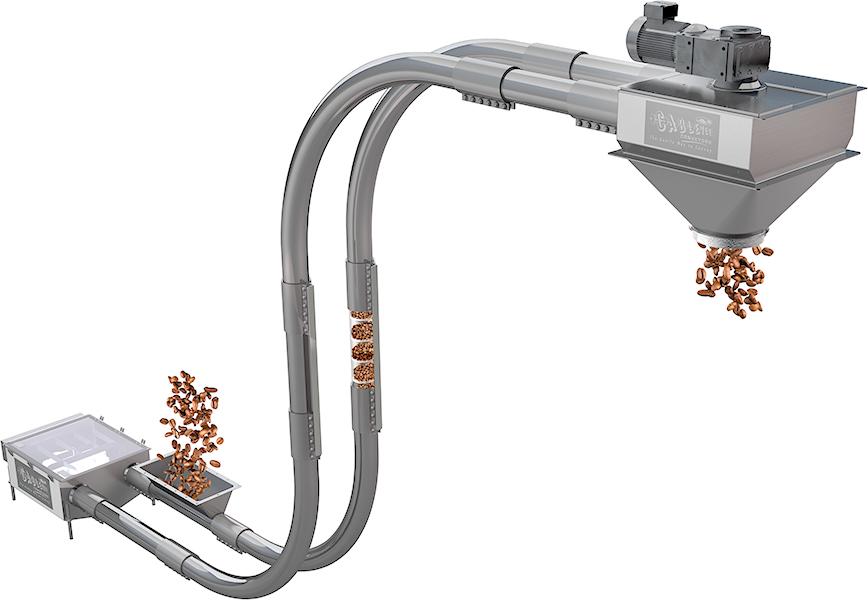 Conveying Systems
Conveying Systems
6+ MIN
28/04/2021
Boost Pet Food Value and Profit with Gentle Conveying Without Using Air
Tubular Cable Conveyors can significantly reduce product damage, energy use, noise, and maintenance. Pet Owners pampering their Dogs, Cats, and animal friends more than ever today, quality and presentation are being scrutinized. As a result, only tasteful whole product is desired--not crumbs, bits or powder. In today's competitive marketplace, unpresentable, broken Pet Food will be taken as a cue for low quality product, unsuitable for cherished pets, who are often treated like family members.To avoid turning off customers, product that is excessively broken or powdery must often be reduced, removed or filtered out, since this may be missed or rejected by the animals. Dealing with broken Pet Food product after production only adds to processing costs and reduces profit. 'Many high-value products can be fragile and need very gentle handling. Otherwise, whole forms can be broken, crushed to bits, and even turned to powder. This significantly lowers the value of the product, and damaged portions may need to be removed or disposed of to prevent perceived quality issues that could prompt customers to turn to other brands,' says Gary Schliebs, a Process Engineer and Director of Plus One Percent. Engineered Solutions, a consulting firm that works in the Food Industry and Markets Food Industry Conveyor equipment globally. 'In some cases, more than 10% of delicate product can be damaged by high velocity air-power systems. The cost to the industry is compounded because the damage often comes at the end of the process, after considerable value has been added, only to have it degraded by a poor choice in the selection of transfer conveying equipment,' adds Schliebs, who frequently consults on food engineering equipment design, plant layouts, and process flows. The Limitations of Air Conveyors In the Pet Food Industry, a wide range of fragile, high dollar value food products can be prone to excess breakage when conveyed at high velocity by air-power, such as in pneumatic and aeromechanical systems. Pneumatic Conveyor Systems utilize air by creating air pressure above or below the atmospheric level. These systems use filters that require regular replacement. The two main types of pneumatic conveyors – dilute phase and dense phase – differ by speed and pressure, and both can be configured as a pressure or vacuum system. In dilute phase conveying, pet food product is suspended in the air as it is transported through the conveying pipe at extremely high velocities of typically 3,400-5,000ft/min. While the product usually has minimal breakage during straight pathways, most systems have bends and sweeps where it can be forced through constricted areas, quickly change direction and be damaged. In such cases, valuable feed often can be too fragile. Dense phase Pneumatic Conveyor Systems, where the product is not suspended in air since it is heavy or abrasive, function at lower velocity than dilute phase. However, with air speeds of about 700-1,500ft/min., delicate food items are still susceptible to breakage at bends and sweeps. While aeromechanical conveyors have a different method of conveyance, these enclosed, high-capacity mechanical systems can also degrade delicate product. With these systems, a wire rope with evenly spaced discs within a tube travels at high speed, running in sprockets at each end of the conveyor. This generates an internal air stream traveling at the same high velocity as the discs that carry product along in the tube. However, these conveyors may also force vulnerable materials through stressful phases during transport, which could impair their integrity. 'Any fragile or friable food product conveyed at high velocity is prone to damage, particularly if it changes direction or exits with impact. This can be the case with both pneumatic or aeromechanical conveyors,' says Schliebs. A Gentler Approach Boosts Profitability According to Schliebs, a gentler alternative to protect sensitive, high-value pet food products is to utilize tubular cable conveyors. These systems move product through a sealed tube using a coated, flexible stainless-steel drag cable pulled through on a loop. Solid circular discs (flights) are attached to the cable, which push the product at low speed through the tube without the use of air, preserving product integrity and minimizing waste. 'Food Industry manufacturers can decrease product damage down to 1-2% with a slower process like a Cablevey Conveyors tubular cable system. With it, product is gently transferred at low speed, so there is minimal to no damage,' says Schliebs. Cablevey Conveyors is an Oskaloosa, Lowa based premium, specialty material moving, mechanical conveyor company that has designed, engineered, and serviced enclosed cable and disc tube conveyors for almost 50 years, and is in more than 66 countries. In the Food Industry, the conveyors are utilized for products such as pet food, nuts, cereal, coffee, snacks, beans, and seeds. The systems can convey up to 2000 cubic feet per hour (56m3/hr.) of flakes, pellets, shavings, crumbles, granules, regrind, chunks, parts, prills, and powders with numerous layouts using multiple inlets and outlets. Since the material is carried between the flights, it is also much easier to safely convey some sticky or easily compacted materials in a tubular cable conveyor than in air-powered conveying systems, where such materials can form plugs. 'With pneumatic or aero-mechanical conveying systems, any soft or sticky material can smear and adhere to surfaces, particularly at bends and sweeps that change direction, which is not an issue with tubular cable conveyors,' says Schliebs. According to Schliebs, the tubular cable conveyor's modular construction can also help reduce product damage by enabling it to slide out on a gentler gradient, rather than simply drop out, as is more typical with conveyors utilizing air. 'To minimize product damage, it is important for food industry manufacturers to not only transfer gently, but also get product in and out of the conveyor safely and gently as well. That is more achievable with a conveyor like Cablevey that allows product to slide down rather than drop out the end,' says Schliebs. In fact, most tubular cable conveyors have interchangeable components that allow the conveyor to be easily expanded or reconfigured to change the length, conveying path and the number of inlets and outlets. These modifications are more complex and time-consuming with a pneumatic conveying system because it has more components and electrical connections. Also, another bonus of the Cablevey systems is that the 'footprint' can be quite small compared to other conveyor systems, and that really helps with tight and compact manufacturing areas. 'Because of the 'bespoke' design of each Cablevey system for customer specific requirements, we can tailor the design to be very 'non-intrusive' in the work area and not hinder access for people and maintenance, as other systems can. This is a real bonus for safety, access and saving floor space, which is another cost to manufacturing,' said Schliebs. Less energy use, less noise Since pneumatic systems convey product at high velocity, this typically requires larger, power-hungry motors that run fans, blowers and rotary valves. In a dense phase system, a pressure tank requiring compressed air consumes additional power. In terms of noise level, pneumatic conveying systems also generate considerable noise. Aero-mechanical systems, running at high speed, generate considerable motor and disc noise as well. Given that smaller motors are used, tubular cable systems are quieter overall and utilize much less energy.'A low speed tubular cable system is quiet enough to easily have a conversation around it while it is running,' says Schliebs. 'In regards to energy, it utilizes about one-tenth that of pneumatic systems. For dense phase models, the electricity savings by using a tubular conveyor can be sizeable, with 1-year ROI in some cases.' For more info visit Source: Cablevey Conveyors
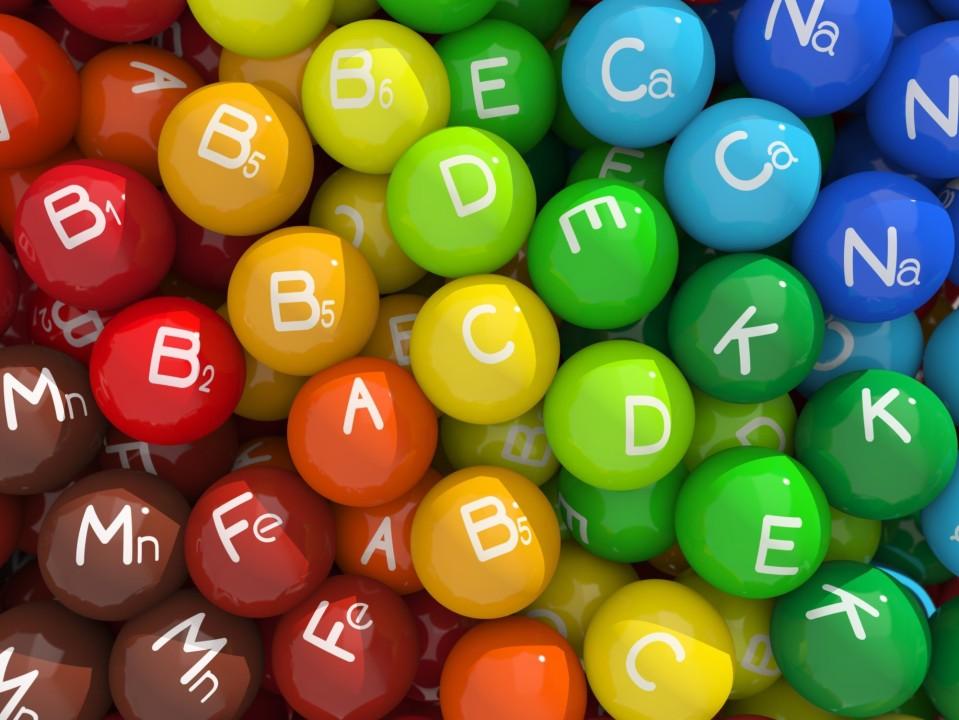 Vitamins
Vitamins
2+ MIN
27/04/2021
The importance of Vitamins and Minerals in Cat and Dog Food
Have you ever noticed the list of vitamins and minerals on the label of a Cat and Dog Food package? This extensive list and the not-so-familiar terms used may scare us a bit, but Vitamins and Minerals are vital components for the well-being, health, and longevity of our Pets. Each Vitamin and Mineral plays a unique role in the body, so it is important to properly balance these nutrients in Pet Food. Vitamin and Mineral supplementation is used in all types of Food for Dogs and Cats such as: dry food, canned food, wet food. These supplements are used to provide the essential nutrients in the correct proportions that they require. In Pet Foods, Vitamins and Minerals are generally added as a premix. It means that some ingredients are included in small amounts in the formulation of dog and cat food, such as vitamins and minerals. Due to the need for high precision in weighing the micro-ingredients that make up the premix, Pet Food Factories choose to buy this ready-made product from a supplier, rather than mixing micronutrients in their own factory. In addition, with the use of the premix there is greater reliability that the mixtures are more homogeneous, guaranteeing a much safer pet food. It is important to take into account the loss of vitamins that occurred during the extrusion process and shelf life, and these losses must be taken into account when formulating a premix. And it is essential to know the sources of microminerals to choose, since there are significant differences in their bioavailability. Currently, there are several Companies specializing in developing premixes in an attempt to facilitate the process of factories that produce complete Food for Dogs and Cats. These Companies have been refining to deliver personalized pet food premixes to the market, which perfectly complete the missing micronutrients in the ingredients used in a greater proportion in the formulations of the products, as if they were missing pieces in the puzzle, being essential for any food. to become balanced and whole. As a market trend, we understand that in addition to being personalized, the premix must also offer innovation so that in addition to improving nutritional quality, it can also facilitate processes, since new technologies are emerging for the commercialization and conservation of food for Dogs and Cats, and micronutrients must be bioavailable in all types of whole foods, ensuring the safety of the food factory. By: Erika Stasieniuk y Ludmila Barbi
 Manufacturing Process
Manufacturing Process
6+ MIN
23/04/2021
Scrap, waste and rework!
Waste, defects and rework: It is usually a 'nightmare' in food processing, here we suggest how to minimize and control it. When we talk to our customers about their most important problems in the production processes in food processing, almost all of them mention one or more: waste, defects and rework. InfinityQS® quality management software is designed to help manufacturers know exactly what to expect… so there are no unpleasant surprises. It's so true that waste, defects, and rework are the nightmare of today's manufacturing. Because if you don't control your processes, these problems will cost you money and headaches. Often times, despite your best efforts, poor quality products eventually find their way into the hands of your customers. With so many competitors in every market segment, one of the biggest differentiators is quality. In any organization, you must implement quality in a standardized way to ensure that metrics are met, and objectives are achieved. Simply put, it´s essential to consistently maintain the highest quality and deliver the highest quality levels 24 hours a day, 7 days a week. That's why InfinityQS quality management software systems are vital to today's manufacturers. The stakes are high, but the cost of the solution for scraps, defects, and rework doesn't have to be. QUALITY as a Priority! InfinityQS´ COO, Doug Fair, says on his blog: "...Are Quality Control Methods 'Mission Critical at Your Organization?" that: 'companies that make quality a priority in their manufacturing create a huge market advantage, have reduced operating costs, allowing them to lower prices to be more competitive or keep prices unchanged and earn additional profits. When quality is a mission critical, companies experience fewer failures, fewer warranty claims, greater customer loyalty ... and higher sales...' When companies make quality a priority, they can easily reduce waste, defects, reprocesses. In essence, this is all about the ability to make quality work for you. By using statistical process control, through a quality management software system (as offered by InfinityQS and its Partnet, Clivio Solutions), you have the best chance of keeping at bay the demons of manufacturing. Control Processes A quality management solution can reduce waste by helping your operations team detect critical out-of-spec dimensions. The earlier you detect these problems, the less wasted materials or recalled products you will have to deal with. InfinityQS quality management solutions provide the tools you need to detect process problems quickly. Let's face it: you can't stop waste if you can't find it. Too many companies use guesswork to figure out why the product is not up to scratch. But with the InfinityQS cloud-based quality management system -- the Enact® Quality Intelligence platform - which is offered and supported by Clivio Solutions, you can identify how to reduce waste in manufacturing and significantly reduce costs in all its operations. Fighting waste is a never ending battle. Enact® gives you the power to accumulate historical and aggregated data on processes, products, lines and even sites, which in turn gives you the ability to track trends and variations that generate waste, even for processes and products that are within the limits. Specifications. As a result, InfinityQS customers have saved many millions of dollars by reducing waste. As Steve Wise, Vice President of Statistical Methods at InfinityQS, writes in his Manufacturing Challenge blog series: "...Generally speaking, management doesn't really care about waste; what matters to them is the profit. Well, to be fair, they do care; but they don't want to deal with it if they don't have to. As long as they are making money, they simply won't have time to spend worrying about waste. And so these 'hidden factories' continue to exist... ". The Hidden Factory What is the "hidden factory" It consists of the "alternative solutions" that an organization creates: small one-time solutions (usually additional steps or additional parts that do not really belong in a product) which solve the problems that operators encounter with processes and lines of manufacturing. "...But in today's - highly competitive - market - with falling profit margins and high failure price, all organizations must take a hard look at waste. They need to expose the hidden factory and take care of its processes. It is the result of improved manufacturing quality..." Beyond inspections When you test quality only on the finished product or at the final production stage, you may run into staggering amounts of waste and scrap, poor quality products, or rework time. Enact® enables automatic notifications and tiered quality controls. That way, operators and quality personnel know immediately if a process, machine or product is out of specification, then they can fix the problem before it causes damage. Enact® allows a 'big picture' view of whether processes are running smoothly or need attention. When you see a problem, it's easy to drill down into the details of real-time alerts and trade status for better troubleshooting and faster resolution. The main purpose of inspections and samples, or sample-based inspection plans, is to capture defects before they leave the plant. InfinityQS through Clivio Solutions allows manufacturers to look "upstream" for the root causes of these problems and detect (and eliminate) them. Working upstream If you can't figure out where things are going wrong, you will likely end up waiting until even more "added value", and more costs, are attached to the product. Then, just at the last minute before it is shipped to the customer, what should you do? Do you throw it away or take it out of stock. ? On the other hand, when you do manage to catch something upstream, it's just one component you need to discard, rather than the entire batch. But you need to know what to do when you find that defect upstream. Using statistical methods, which are the core of InfinityQS' quality management software products, will help you pinpoint where the problem is (the root cause) and help you determine what you can do about it. This is the strength of statistical process control. And this is what Clivio Solutions can help you with. Solutions If you can focus on uncovering root causes and eliminating source variation, you can eliminate many of the additional costs that creep into your production processes. These costs are often the result of people trying to fix something quickly or make the best of a deteriorating situation. But the key to all of this is that your organization cannot be blind to excess waste, defects, or rework. Rather, you must acknowledge the problems and put a quality team on the case. There is no reason to leave money on the table while ignoring or hiding problems. Don't be fooled: none of this is "the cost of doing business." It just isn't. Businesses must recognize what their problems are, where they reside, seek smart solutions, and then the bottom line will reflect their efforts. There is nothing to fear. InfinityQS quality management software solutions are designed to lead you to quality excellence, supported by the professional and industry expertise of Clivio Solutions. You will be surprised to know how simple and economical it is to implement InfinityQS quality management software with the support of Clivio Solutions. We await your inquiry. For more information you can contact: Engineer Francisco Pantoni Source: Clivio Solutions
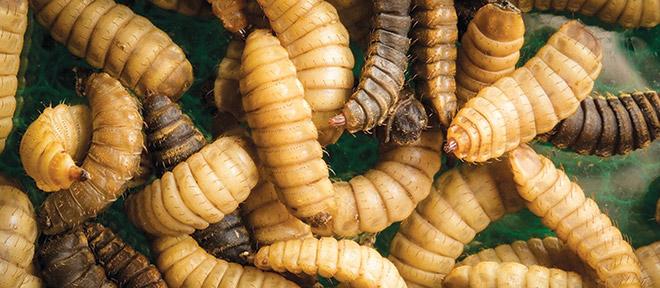 Micro Ingredients
Micro Ingredients
2+ MIN
20/04/2021
Rabobank: Insect Protein Demand may hit Half a Million mt by 2030
The demand for insect protein, mainly as an animal feed and pet food ingredient, could reach half a million mt by 2030, up from today's market of approximately 10 thousand mt, a Rabobank report says. Dutch agricultural market specialist Rabobank expects global demand for insect proteins could reach 500 thousand tons annually by 2030. This amount is fifty times higher than the 10 thousand tons produced in 2020. The report says after reaching half a million metric tons, it will get easier for the industry to expand supply. While the sustainability aspects and functional benefits support demand growth, high costs and prices, the current limited production capacity, and legislation are the main factors limiting growth of insect protein. However, Rabobank foresees that that the industry will skyrocket in the next decade and the aqua feed market is expected to show the greatest potential. 'Beyond inclusion in aqua feed formulas, a range of R&D-driven opportunities will create additional areas of future success for this new industry,' the report states. Although the report predicts pet food and poultry markets will grow at a slower pace, there is still room for expansion. Insect Protein for Pet Food to account for 40% The report indicates the market for insect protein as a pet food ingredient is expected to reach 150 thousand metric tons globally by 2030. This will account for 40% of the expected insect market size at that time. Despite this, insects are still forecast to account for less than 1% of the overall aqua feed market. At present insect consumption in the aqua feed market is only a few thousand tons per year. 'The egg market allows for differentiated concepts and categories, such as free range, organic, omega-3 added, etc., which gives space to market insect-fed eggs. We believe the potential is more limited for broilers, due to the high price point of insects compared to soybean meal,' the report points. In poultry feed, the largest potential lies in layer hens and is more limited for broilers because of the high price point of insects compared to soybean meal. According to the report, the egg market allows for differentiated concepts and categories, such as free range, organic, omega-3 added, etc., which gives space to market insect-fed eggs. Rabobank believes the swine market is the smallest addressable market for insect protein due to market dynamics and insect protein price compared to soy. Sector may Grow even faster after 2030 'After reaching half a million metric tons (by 2030), it will get easier for the industry to expand supply. From that point on, it will take much less time to double or even quadruple production volume and exceed one million metric tons.' Finally, the report highlights that continued research and development, as well as wide-scale education could even lead to the development of specialized insect ingredients and products with applications beyond feed and food, but that considerable innovation and investment will be needed to reach that point. By: Feed Planet
 Market Information
Market Information
1+ MIN
17/04/2021
Texas A&M University announce online Extruded Pet Foods and Treats Practical Short Course
As several events have been postponed, moved online, or cancelled altogether due to the Covid-19 concerns in the United States, Texas A&M University (TAMU) has announced its 6th Annual Practical Short Course on Extruded Pet Food and Treats, which will be held live online July 12-15, 2021. A four-day Practical Short Course on Extruded Pet Foods and Treats will be presented in July 12-15, 2021 at Texas A&M University liveonline by staff, Industry representatives, and Consultants. The program covers information on material handling, preconditioning, extrusion of Pet Foods, extruded and non-extruded treats, raw material, extrusion hardware, automation, product analysis, meat handling in pet food, drying, cooling, and enrobing, food safety, pet food and treat shelf life, and trouble shooting. Reservations are accepted on a first-come basis. For more information, programs and application forms please visit the course website, HERE. Alternatively you can contact Mian N. Riaz, Ph.D, CFS at. [email protected] By: All Pet Food
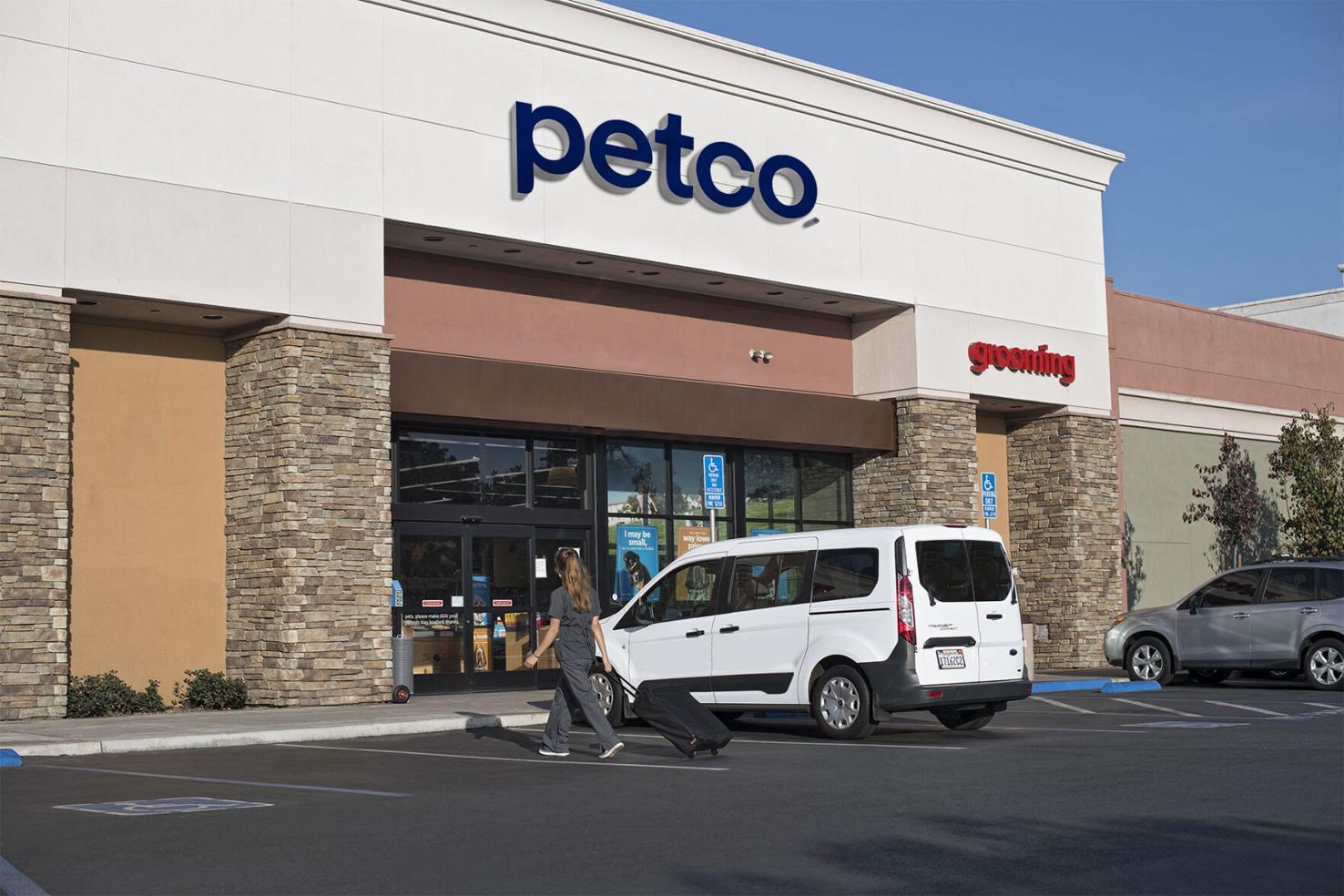 Market Information
Market Information
3+ MIN
16/04/2021
How Petco Is Catering to Pet Owners’ Changing Buying Habits
The future is now for Petco. The big-box retailer's aggressive omnichannel strategy is not only drawing customers to its products and services in droves, it's also demonstrating how some industry observers predict pet owners' buying habits will change by mid-decade. Petco's hard work integrating its products and services together, ultimately making it a one-stop shop for pet owners, has paid off. The retailer counted 1 million new customer acquisitions during its fourth quarter, ended Jan. 30, and officials reported the company's digital sales grew 90 percent in Q4. "While we compete with peers across each of our channels, from our perspective, no one has the end-to-end integrated multi-channel experience with the ecosystem that Petco provides pet parents, from nutrition to vet clinics, to training and grooming to our differentiated fulfillment options and more," Ron Coughlin, chairman and CEO of San Diego-based Petco Health and Wellness Co., said during the company's Q4 earnings conference call on March 18. Petco's approach encapsulates what market research firm Packaged Facts refers to as the 'omnimarket,' which 'simultaneously and somewhat chaotically crosses former borders between medical versus non-medical, products versus services, food versus non-food products and pet owner demographics,' according to Packaged Facts officials. "Omnispending, from the consumer behavior point of view, similarly recognizes that consumers now routinely spend in-store and digitally-such that by mid-decade only half of pet product spending will take place in a store,'" said David Sprinkle, research director for Packaged Facts, who will address the 'new breed' of pet owners, e-commerce/channel share shifts and digital pet health care trends during a presentation at Global Pet Expo Digital Access on March 24. Petco officials are already seeing a change in pet owners' spending behavior. "Particularly in older consumers we're seeing, all of a sudden, they are comfortable buying, purchasing online and their digital savviness has gone up, forced by the stay-at-home orders,'" Coughlin said. 'At the same time, increasingly, we're not thinking about our customers as either/or; 39 percent of customers, according to our studies, are omnichannel customers.' In 2020, Petco's digital business surged 100 percent, Coughlin reported. But business didn't just stay online; the surge helped drive traffic and growth to Petco's in-store pet services, including grooming, training and veterinary care. The link between digital offerings and in-store services has been 'very, very powerful' for Petco, said Mike Nuzzo, Petco's COO and CFO, adding that 25 percent of grooming appointments are now booked online. Petco's success in syncing its in-store and online experiences is exactly the type of 'remix of physical and digital shopping behaviors' that Packaged Facts has predicted will play out in the U.S. Pet Industry in the future. Petco is clearly a big fish in the sea, so what do these trends indicate for the independent pet specialty retailer? Adaptability and creativity are key. A year after COVID-19 changed the way people live and shop, pet retailers know firsthand that brick-and-mortars can survive, but not without meeting customers where they need retailers the most—in-store and online. By: Pet Products News
 Market Information
Market Information
2+ MIN
15/04/2021
Jordan Niegsch introduced as Process Implementation Specialist at Extru-Tech
In an effort to continually improve product and process development for its customers, Extru-Tech, Inc., recently announced the addition of Jordan Niegsch as Process Implementation Specialist. A graduate of Pittsburg State University, Mr Niegsch has spent the past 12 years working in the petfood industry, where much of his focus was on single screw extrusion and high-meat-inclusion diets and overall plant operations. According to Scott Krebs, Executive Vice President for Extru-Tech, Mr Niegsch's role will involve all aspects of product and process development and support, including working with the Innovation Group to develop and deploy new technology for its clients; participating in process improvement; training clients to benefit from new technology, and participating in strategic planning and evaluation. "Jordan has already held numerous operational positions during his petfood career, ranging from assisting a start-up company to working for the largest co-manufacturing network in North America,'"adds Mr Krebs, noting that Mr Niegsch has worked with Extru-Tech equipment numerous times along the way. "Consequently, his role with our company will be to work closely with our team in the creation, development, implementation and field support work regarding Innovation Projects. In the process, he will use resources both internal and external to ETI to execute directives. Management has no doubt Jordan will be involved in every segment of our business." "I'm excited to be part of the Extru-Tech team,' Mr Niegsch relates. 'I've worked with this group for many years and tested several pieces of research and development equipment and procedures in my previous facilities; I look forward to being on the other side and helping ETI customers improve their processes and equipment." "This job allows me,' he concludes, 'to help to facilitate a project from the concept stage all the way to the customer, working with all departments of ETI along the way." Visit the Extru-Tech website, HERE. Fuente: Extru - Tech
 Market Information
Market Information
2+ MIN
14/04/2021
The Appet!zer Blog arrives in Latin America!
Diana Pet Food launches its Blog in Spanish and Portuguese to feed the curiosity of professionals in the regional Pet Food Industry. In April, Diana Pet Food, a pioneer and world leader in high-value solutions for the pet food industry, launches its Appet!zer Blog throughout Latin America. This blog gathers Diana Pet Food's expertise on palatability, health and nutrition, pet food protection, measurement and sustainability to help pet food professionals develop their business. Readers will find a range of articles including: back to basics; top tips; trend analysis; best practice; interviews with our experts and videos. Anderson Conejo, Diana Pet Food Regional Marketing Manager tells us about it: 'The articles are written by our internal experts; we are also proud to be associated with industry specialists such as Mintel who enrich our content with the latest market intelligence'. In a rapidly growing and constantly changing pet food industry, shaped by evolving technologies and new lifestyles for pets and their owners, Appet!zer helps our customers better understand this fascinating market and also provides the keys to meeting the changing expectations of owners for their pets. About Diana Pet Food: Diana Pet Food is the global leader and pioneer of high value solutions improving pets' well-being and owners' satisfaction. The entity provides multiple products and services improving pet food palatability, pet health, and pet food protection. Diana Pet Food is present on five continents with 1090 employees, 18 industrial sites, 18 sales offices and 3 expert measurement centers with 860 cats and dogs. Diana Pet Food is part of Symrise Nutrition, which encompasses Diana Food, ADF/IDF and Diana Aqua as well as Probi. Within the Symrise Group - a global supplier of fragrances, flavors, food, nutrition and cosmetic ingredients - Symrise Nutrition leverages the Group capabilities to provide advanced natural health & well-being nutrition solutions for the human food, pet food and aquafeed industries. Visit the Blog and Subscribe By: Diana Pet Food
 Packaging
Packaging
2+ MIN
13/04/2021
New Product - PAYPER presents new high-output FFS bagger
PAYPER has recently launched a new FFS bagging machine capable of filling up to 2,600 bags/hour. This bag filler, which is now the highest performing member of the FFS ASSAC-family, is called U20. It handles bags from 5 to 50 kg and works with tubular PE or Aluminium roll film with PE laminate and is especially suitable for bulk solids in granules. The ASSAC-U20 is specially designed for free flowing products such as plastic pellets, fertilizer prills, etc. Common demands when bagging this kind of products are output capacity, precision and reliability and the U20 meets all three. Five decades of experience and collaboration with the industry make PAYPER a trustworthy partner. Any new project is developed in close cooperation with the client and is tailor-made to suit each individual need. The ASSAC U20 is a flexible bagging solution that can be adapted to different requirements by adding modules such as Automatic roll film change; ATEX certification; Anti-corrosion kit; Cleaning system; Corner sealing system for optimal bag shape or a Movable platform. Additionally, a Metal-detector, Check-weigher or Ink-printer can be added to the line to customize the entire system for the user. Read more HERE ASSAC-U20. PAYPER's newest FFS bagging machine – 2,600 bags/h Bagging-line with PAYPER's new FFS bagger, 'ASSAC-U20' with a capacity of 2,600 bags/h. Features automatic roll film changer, metal detector and check weigher. Automatic film roll changer fitted to PAYPER's new FFS bagging machine 'ASSAC-U20'. PAYPER's high-speed FFS Bagging System, 'ASSAC-U20' with automatic film roll changer. Fuente: Payper
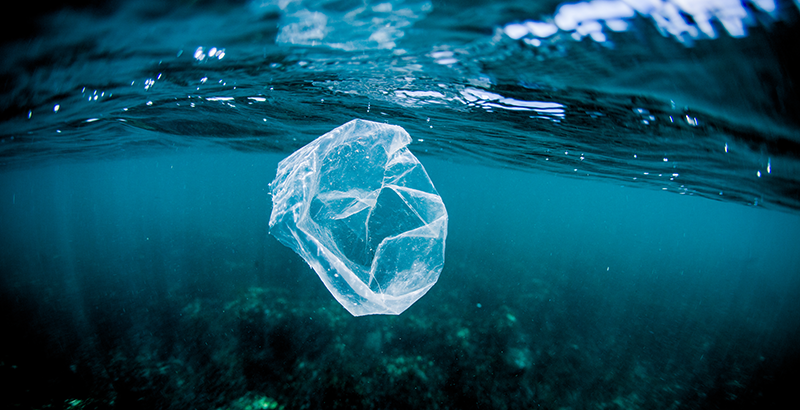 Trends
Trends
3+ MIN
10/04/2021
Pet Sustainability Accredited Company Pursues 3 Actions To Reduce Its Plastic Footprint
Flexible Plastic Packaging is a favored material for Pet Food and treat Companies, providing longer freshness, durability, and easy product viewing for the consumer. Yet plastic packaging accounts for up to 20% of the environmental impact of a pet food or treat product. The Natural Dog Company, a Pet Sustainability Accredited business, is addressing the impact of its plastic packaging in three ways: plastic neutral certification, use of #4 plastics and recycling product tags returned by customers. We've known for a long time that plastic has been piling up in the oceans and causing problems, but it wasn't until we heard that it's projected that by the year 2050 we'll have more plastic in the ocean than fish, that it really hit home for us. At that point we knew, as The Natural Dog Company really wanted to be part of the solution to Ocean Plastic rather than being a company that is adding to it. Dan Goodnow, CEO, The Natural Dog Company. Plastic Neutral Program Removes Equivalent Plastic Created The Natural Dog Company partners with rePurpose Global, a company that manages the world's first plastic credit platform. On their website, the company notes that for every pound of plastic the company produces, an equivalent amount of plastic is removed from the environment. The Natural Dog Company pays rePurpose Global a fee, based on the weight of plastics it produces. RePurpose Global then finances projects that remove plastic waste from oceans – a project selected by The Natural Dog Company. RePurpose notes that plastic neutral certification is an excellent first step to combat plastic waste, and companies can do so for less than .1% of sales revenue. Working with rePurpose Global was great. The team was very thorough with their research, transparent about how everything would work and answered all of our questions. We feel really fortunate to be able to work with them to get this project off the ground.' Dan Goodnow. Switching to #4 plastic for all Packaging The Natural Dog Company also switched all of its plastic packaging to #4 plastic. 100% of the company's bags are now #4 LDPE (low-density polyethylene). The bags display the #4 LDPE logo, which helps some customers understand the opportunity for recycling the bag. The company's website provides links to a #4 plastic bag drop-off location directory. The Company also encourages its retailers to setup drop-off bins at their pet stores, noting that it will encourage customers to return to the store and buy additional treats for their pets. A recent 'return to retail' pilot collections program demonstrated an increase in store visits. TagBack Program Recycles Product Tags The Natural Dog Company produces elastic tags for bulk treats like rawhides. The tags help retailers manage and keep accurate data on their inventory. The product tags are made by Bedford Industries, of Worthington, MN. Bedford Industries manages TagBack, a product and service where they produce tags for businesses and provide collection systems (mail back and in-store) to collect the tags and make them into other reusable materials. Bedford's TagBack services are also widely used for produce. Actions That Add Up in Reducing Plastic Waste Individually, each of these three steps was a relatively simple action for the Natural Dog Company to take, mostly involving changing their packaging and tags to readily available materials. Yet together, these actions have a significant impact: the company estimates that these three initiatives remove about 20,500 pounds of plastic annually. Pet companies have many resources available to help in addressing packaging waste and other social or environmental initiatives. Dan Goodnow, CEO of The Natural Dog Company encourages other pet companies to engage with the Pet Sustainability Coalition in getting help: The best way for other Pet Food Companies to make a change in their own packaging is to first determine their own company sustainability goals, then talk to PSC about the best way to achieve them! Whether it's reducing carbon footprint, simplifying end-of-life recyclability, or increasing the amount of post consumer recycled content in your bags, the team at PSC has their fingers on the pulse of what's happening in the sustainable packaging sector and can point you in the right direction to take your first steps. Author: Dan Goodnow Source: Pet Sustainability Coalition
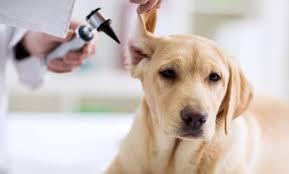 Dogs
Dogs
7+ MIN
08/04/2021
How to Identify, Treat, and Prevent Dog Ear Infections?
Dog ears come in all shapes and sizes, but they are unique in their anatomy when compared to human ears. Dogs have a long ear canal with both vertical and horizontal components. This creates a J or L shape that traps debris more easily, which in turn, can lead to dog ear infections. Dog ear infections are common, so it's not surprising that in 2018, Embrace Pet Insurance listed dog ear infections as third on the list of the top five dog medical conditions. Here's a guide to help you recognize the signs of dog ear infections so you can take your dog for treatment as soon as possible. Types of Dog Ear Infections Signs of Dog Ear Infections Causes of Ear Infections in Dogs and Puppies Are Dog Ear Infections Contagious? Will Dog Ear Infections Go Away on Their Own? Can You Treat Dog Ear Infections at Home? How to Treat Dog Ear Infections Properly Treating Chronic Ear Infections in Dogs How to Prevent Ear Infections in Dogs and Puppies 3 Types of Dog Ear Infections After the ear canal sits the eardrum, then the middle and inner ear deep inside the head. Otitis is inflammation of the ear. Otitis is divided into three types based on the location of a dog's ear infection: Otitis externa: inflammation of the ear canal. Otitis media: inflammation of the middle ear. Otitis interna: inflammation of the inner ear. Otitis externa is the most common of these three infections because this is the part of the ear most exposed to external factors. Ear infections can be acute (with a quick onset) or chronic and recurrent. Dogs can also have an infection in one or both ears. Signs of Dog Ear Infections A healthy Dog ear is clean and dry. It is normal for small amounts of microscopic bacteria and yeast to live in the outer ear canal, but when a buildup of debris occurs, or the normal, healthy ear canal is compromised, those bacteria and yeast can overgrow and create an infection. Common signs of dog ear infections include: Redness Odor Itching/scratching Pain Shaking of the head Head tilt Occasionally, dogs can experience hearing loss or balance issues. Rarely, an ear infection may affect a dog's appetite if the pet is having system-wide effects. This is seen more often with otitis media or interna. What Causes Ear Infections in Dogs and Puppies? Many things can cause ear infections in dogs and puppies. Often, an underlying problem leads to the inability of the normal protective barrier of a dog's ear to work properly. Once the ear environment becomes moist or inflamed, it is easy for bacteria or yeast to overgrow and cause infection. Here are some common causes for a dog's ear to become infected: Foreign bodies (grass awn, foxtails) that get into the ear. Ear mites. Excessive moisture from bathing or swimming. Food allergies. Environmental allergies. Endocrine issues such as hypothyroidism. Autoimmune diseases such as pemphigus, lupus, or vasculitis. Polyps (fleshy growths inside the ear canal). Certain types of cancer. Trauma to the ear. All of these problems can make the ear canal susceptible to bacterial infection and/or yeast infection. When a dog is in pain and scratching and shaking excessively, an aural hematoma can develop as well. This is seen in the pinna or earflap, where ruptured blood vessels leak blood that clots and causes swelling and pain. Are Dog Ear Infections Contagious? It depends on the cause, but the majority of dog ear infections are not contagious. If the cause is ear mites, though, these parasites are extremely contagious. With ear mites, all pets in the home must be treated simultaneously. Ear mites are relatively common in puppies and kittens and may not be noticed initially when adopting a new pet. But shortly after bringing your new pet home, multiple pets in the house will be scratching and shaking. Rarely, a methicillin-resistant Staphylococcus aureus (MRSA) or possible other contagious infection can be cultured from an infected ear. It is recommended to practice good handwashing when interacting with a pet with an ear infection and to limit other pets licking the infected pet's ears. Good handwashing is also recommended after cleaning or medicating the ear to limit any topical absorption of medication. Will a Dog Ear Infection Go Away on Its Own? Most often, a dog ear infection will not go away on its own. All types of otitis require a veterinarian to evaluate the infection and the eardrum. If the eardrum is ruptured, certain cleaners and medications can be toxic to the middle ear. Can You Treat Dog Ear Infections at Home? The simple answer is no. Dog ear infections require vet treatment and medication in order to restore a healthy ear canal. After the veterinarian has evaluated your pet, they will determine if any further home treatment is appropriate. This can be done if a small amount of debris is present and the eardrum is intact. Dr. Wendy Brooks, DVM, DABVP, notes that if a large amount of debris present, a veterinarian must perform a thorough deep clean while the pet is under sedation. How to Treat Dog Ear Infections Properly Your veterinarian will likely need to test the ear debris or perform scans of your dog's ear to choose the appropriate treatment. These are some tests that your vet might conduct: Cytology uses special stains on the swab of debris to color the microscopic bacterial cells or fungus. Viewing these under the microscope can identify the specific cause. Culture/sensitivity testing uses special medium/broth to grow and identify the specific bacteria that are causing the infection. It also tests which antibiotics will be effective in eliminating the infection. Blood testing may be needed to check for endocrine disease as an underlying condition. Skull x-rays, a CT scan, or an MRI may be needed to assess the extent of severe or inner ear disease. Once the details of your dog's ear infection are known, therapy will likely consist of multiple elements that may include topical, oral, or surgical therapies. Topical Often, a cleanser in combination with an ointment or eardrop can be used. This medication typically needs to get deep into the ear canal. Sometimes an oti-pack is used. This medication is in a lanolin base that is slowly released and does not require daily cleaning or application of drops. Oral Depending on the severity of the infection, an oral antibiotic, antifungal, or a steroid medication may be used to help heal the ear from the 'inside out.' Surgical Ears that have had severe chronic disease may no longer respond to medical treatments. The goal of surgery for these ears is to open the canal or sometimes to completely remove all diseased tissue. What If Your Dog Has Chronic Ear Infections? Chronic ear infections can be time-consuming and frustrating for the pet, the owner, and even the veterinarian. Certain breeds of dogs are known to more commonly experience recurring ear infection issues, according to the Veterinary Information Network.3 This can be partly due to genetics, ear shape, or ear confirmation. Over time, proliferative ear tissue can form, making treatment more difficult. Cocker Spaniels and Springer Spaniels commonly get chronic infections due to long, floppy ears and a high numbers of ceruminous glands (ear sweat glands that produce earwax). Shar-Peis have small ear canals that can trap and hide debris. Labrador Retrievers and Golden Retrievers are prone to allergies and underlying sensitivities leading to chronic or recurrent ear infection. Schnauzers and Poodles often have excess hair deep in the ear canal. Chronic dog ear infections require closely working with your veterinarian to treat. It is important that your vet does testing to choose the appropriate medication. Chronic infections can require medication consistently for 6 to 8 weeks. After treatment, testing is needed again to ensure that all the infection has cleared. If we stop medicating too soon or do not treat underlying problems, it is easy for the infection to return, sometimes even becoming resistant to many medications. How to Prevent Ear Infections in Dogs and Puppies Regular grooming, ear cleaning, and ear maintenance are important parts of pet care. Routine ear cleansing is especially important if your dog swims often. Cleaning is best accomplished with a professional dog ear cleaning product. These typically have been specifically formulated for effective pH ranges for dogs and contain drying agents. Key Points for Dog Ear Cleaning Do not use alcohol or hydrogen peroxide, as they can kill healthy ear cells. Do not stick cotton swabs down into your dog's ear, as this can risk rupturing the eardrum. It is okay to use cotton balls or ear wipes to clean crevices and the earflap. Dog Ear Cleaning Technique Apply liquid cleanser to the ear as directed. Close the earflap and massage the base of the ears. Gently wipe clean with a cloth or cotton balls. Apply any medication prescribed. By: Pet MD
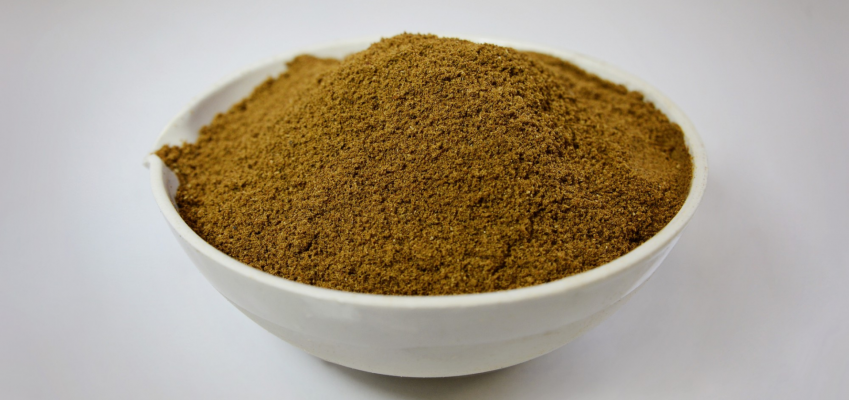 Animal Origin
Animal Origin
1+ MIN
06/04/2021
What is Meat Meal?
What is this ingredient in pet food? Meat meal is based on one of the oldest ways of preserve meat -drying. This method was commonly used amongst humans before refrigerators and freezers were invented. What is Meat Meal made from? All ingredients for Meat Meal are sourced from human food slaughter houses -ill or dead (none slaughtered) animals are not included. A good chicken based meat meal does also not contain beaks, feet and feathers. Some meals do contain a limited amount of bones – in this case they are defined as meat and bone meals rather than meat meal. As calcium, which the bones amongst others provide, is an important component in the pets diet it can be beneficial that this ingredients is included in Pet Food in limited volumes. How is Meat Meal made? When the meat scraps are processed into Meat Meal they are purely dehydrated/dried and ground into a fine flour. As this is done shortly after the animal has been slaughter the meat is well preserved and can help ensure a good and healthy Pet Food all the way to the expiry date. Meat meal vs. meat slurry/fresh meat? As the meat has been dehydrated it is also significantly more concentrated than meat slurries -a fresh meat 'soup'. So keep this in mind if you attempt to compare a Meat Meal based with a Pet Food based on meat slurry. By: Aller Pet Food
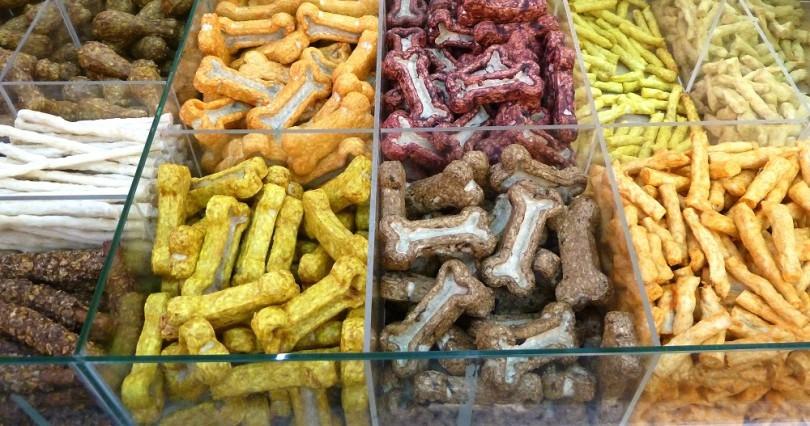 Market Information
Market Information
2+ MIN
31/03/2021
What Rising Chinese Pet Food Market Could Mean for Western Pet Food Markets
There has been an abundance of reporting on the growing Chinese Pet Food market and the opportunities for foreign brands entering into the market. What has been missing from the discussion is a rising trend of Chinese brands that are competitive on the international market. Previously Chinese brands have had much success in the manufacturing for foreign brands with OEM practices. A recent trend is a rising number of brands rising up within the country itself, having much success and venturing out into markets outside of China. Chinese companies have accumulated years of experience in the cost-effective manufacturing of Pet Food and with the rising trend of pet food demand within the country itself it has developed its own brands, meeting the general trend of growing standards that Pet owners the world over expect for their beloved pets, such as human-grade ingredients and international food-grade standards. In 2020, US pet treat sales were up from $36.9bn to $38.4bn (https://www.americanpetproducts.org/press_industrytrends.asp ) with a further growing market for 2021. This continued trend of growth means there is growth opportunity for brands. Pet consumers, although more and more conscious of Pet health, are still conscious of cost-performance and look for treats that meet their standards, that do not dig into their pockets. Therefore there is great opportunity for Pet retailers, who want to offer high-end, quality treats at a slightly lower price point, in considering the brands that already have a successful track record within China. John's Farms is an excellent example of a family-established brand that has achieved large success and has successfully ventured out into international markets as it meet the requirements and standards of consumers globally who are demanding human-grade, cheap-filler free and balanced pet treats. Key takeaways: Growing market in China is improving standards and branding within the country The growing brands and standards means opportunity for Western and other global markets to enjoy fast growing Chinese home brands that are venturing into international markets Western pet retailers can take advantage of high-end brands that match the Western high-end ones, but that are at a lower price point By: Zoommypets
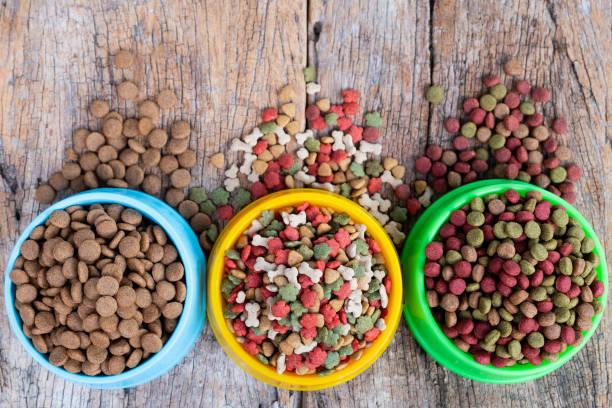 Manufacturing Process
Manufacturing Process
5+ MIN
30/03/2021
Pet food Production: 3 Factors for Optimizing Extrusion Economics and Efficiency
The extrusion and drying phases of pet food production create three challenges that must be balanced with production efficiencies and economics: Managing the moisture levels in pet food to support consumption preference. Optimizing production capacity to achieve efficiency and economics. Consistently producing safe, high-quality food with an adequate shelf life. As extreme thermal conditions during extrusion and drying processes reduce moisture levels during pet food production, the result can be an adverse effect on consumption preference. And while simply adding more moisture or lesser drying during processing may seem like a logical solution, additional moisture can negatively affect shelf life stability of the finished product. Achieving the proper balance of moisture content, kibble throughput/production capacity and pet food quality can support safety and quality parameters, without sacrificing production efficiencies. This article examines approaches to achieve such a balance of quality product, efficient production and economics. Increasing production capacity and efficiency While optimizing moisture levels in pet food kibble can be a complex and delicate process, studies show there is an opportunity to increase production capacity and/or improve energy efficiency. Achieving one or both of these production objectives can result in improved economics for the pet food producer. As a research-based organization, Trouw Nutrition, a Nutreco company, conducts studies to evaluate innovations that support safe, high-quality pet food and production economics. A good example of this research comes from a commercial pet food study. A study measured how adding a combination of buffered and non-buffered organic acids with surfactants in the conditioner at two different inclusion rates impacted production parameters. Two dosages of Fylax® Forte-HC liquid were added at the preconditioning stage while maintaining production conditions. As illustrated in Table 1, applying the product with the dryer temperature set at 120◦C showed a significant increase in throughput while reducing the moisture percentage and water activity (AW). The results of this study demonstrate an opportunity for pet food producers to lower the temperature or increase the dryer throughout speed, thus reducing energy use and/or improving the efficiency of the production process. Improved production efficiencies can also be seen in a second study. In this study, the production speed was accelerated to 11,000 kg/h, the dryer temperature was set between 105-110◦C and AW was at a maximum of 0.70, in accordance with the producer's quality standards. The results presented in Table 2 show a maximum increase of 0.08 in AW and a 2.81% increase in moisture. Even though the AW and moisture levels were higher, the Fylax Forte-HC liquid's mould control properties proved effective. The study showed shelf life was increased by 72% at the lower inclusion rate compared to a control treatment. And at the higher inclusion rate, the results were even more dramatic–shelf life increased 171% compared to a control treatment. These beneficial effects can largely be attributed to a patent-pending technology – ActiProp® – included in Fylax ® Forte-HC liquid. The inclusion of ActiProp is aimed at helping achieve quality kibble and production efficiencies by inhibiting mould growth, prolonging shelf life, protecting the nutritional value of petfood, retaining kibble's moisture content and improving production capacity. In addition to the studies noted above, further studies conducted in commercial production facilities around the globe have shown consistent results. In fact, when the dryer temperature was reduced by 14◦C, the percentage of moisture increased while the AW value remained below the target of 0.60 (Table 3 and Figure 1). Supporting safety and shelf life As the commercial environment may require pet food to support a shelf life up to 24 months, assuring pet food longevity and kibble quality can pose stability challenges. A mould inhibitor should be added during preconditioning to help assure shelf life. Again, the propionic acid included in ActiProp® technology can play a role in supporting shelf life. After the extreme environment of the extruder, adding a mould inhibitor blend with a stable and highly concentrated blend that offers a minimum of 95% retention of propionic acid can ensure a prolonged effect throughout the kibble's shelf-life. The mould inhibitor discussed above (Fylax® Forte HC liquid) has been proven to withstand the high temperatures of extrusion. During preconditioning, the homogenous distribution of added moisture and organic acids can be supported by surfactants and emulsifiers which reduce water's surface tension. This reduction allows the moisture and organic acids to penetrate more deeply into kibble particles, thus increasing the total fixed water in kibble and resulting in a lower free water level. Understanding how these processes work during feed production informed developers' decision to add ActiProp® technology to Fylax Forte-HC liquid. The technology's propionic acid, and emulsifiers along with a buffering agent work together to achieve a prolonged effect that can stand up to the extended shelf life requirements of commercial environments. The phytochemical compounds along with the propionic acid in the ActiProp ® technology have proven to deliver a synergistic effect. Effective application is essential Even the most sophisticated Pet Food production technologies will not deliver the desired results if dosing or application are not aligned with the production environment. With this in mind, Trouw Nutrition developed dosing equipment to allow for accurate, safe and continuous dosing of a mould inhibitor during pet food production. Dosing equipment attuned to the variances within the production environment ensures that the blend of buffered and non-buffered organic acids and surfactants is effectively distributed. As every production environment is unique, it is important that equipment is adjustable. Dosing equipment developed by Trouw Nutrition mixes the mould inhibitor with water used in the preconditioning process and then the product is continuously sprayed onto feed materials in the preconditioner. Investing in consistent production performance There are several benefits associated with optimizing moisture penetration in pet food kibble. These benefits include unform starch gelatinization, better starch availability and improved palatability of the finished pet food. An adequate product properly applied can help pet food producers achieve the ideal balance of moisture levels in kibble while potentially reducing the amount of energy consumed during the extrusion and drying phases. As studies show, all of these production efficiencies can contribute to improved production economics. Author: Trouw Nutrition
 Packaging
Packaging
4+ MIN
26/03/2021
Trends and Challenges in Pet Food and Treat Packaging
As consumers shop for their pets, food and treat packaging can make or break their purchasing decisions. That's because packaging provides immediate and often visible evidence of a company's efforts to improve food safety, appeal to current consumer demands, and create a more sustainable future. Find out the food and treat trends that are driving changes and challenges in packaging. Sample packs for snacking The rise of snacking among consumers is carrying over to their pets. Many owners are still working from home in some capacity, so they're able to spoil their pets with snack breaks or use treats to keep pets occupied during conference calls. More time at home also means more time to sample new products. But owners may prefer not to buy a large package of a particular treat if they aren't sure about the product's safety or palatability. They might also be looking for ways to offer their pets more variety. Treat manufacturers can help with the decision process by bundling together different types of chews or treats for pets to try, or they can package individual items in small, sample-sized packaging. These formats are easy for owners to grab-and-go while at the store, and they're perfect for dropping into gift packages and subscription boxes. Smaller batches, single servings It's not just the treats that are getting single-serve, convenient packaging — pet food manufacturers are beginning to package pet food in smaller portions. It's common for manufacturers to package wet, fresh, and frozen food in individual pouches, but now brands like Purina are doing the same with kibble. For pet owners, smaller package sizes have many advantages: Preventing obesity: Owners who struggle with how much to feed their pets can benefit from purchasing pre-portioned food. Maintaining freshness: Buying a 25-lb bag of food for a 5-lb dog may seem more cost-effective, but not if the food spoils and goes to waste. In general, it's best to use up dry food within about a month of opening, and small batches make it easier for owners to do so. Packing for adventures: Small packages are easy to pack up and take along when going on a hike or road trip with pets. There's likely to be a growing demand for smaller portions as consumers plan to include their pets in post-pandemic travel. Premium quality and safety More than 40% of dog and cat owners buy premium pet food. And a premium quality product deserves premium quality packaging to protect and preserve the contents. Clear, colorful designs and features that make the packaging easy to open and use also indicate to consumers that they're buying a premium product. However, about half of pet owners who buy premium pet food are unhappy that they can't properly close the bag after opening. Pet food stays fresh longer if stored in its original packaging. But if the bag gets damaged while opening or pet owners struggle to reseal it between feedings, they risk compromising freshness by leaving it open or pouring the food into a separate container. So developing packaging that's not only easy to carry and open but reliably resealable is a key focus area for manufacturers, especially for premium products. Sustainability Sustainability continues to be an influencer of consumer behavior, even when it comes to pet care. Three-fourths of pet owners say environmental issues have swayed their pet care purchases and decisions, including (for 40%) what food they feed their pets. And nearly 75% of pet food purchasers say they feel more positively about brands that take steps to make packaging more sustainable. The challenge for manufacturers is that sustainability often conflicts with other packaging trends. Environmentally-friendly packaging materials may not deliver optimal quality, durability, and food safety features. And smaller or single-serve packaging may add to the waste problem rather than solving it. One solution is to continue to improve package recyclability, provide clear recycling instructions, for consumers, and encourage participation in recycling programs. Last year, Pet Sustainability Coalition, Earth Animal, and Petfood Experts launched the Flex Forward program to do just that. The goal of the program is to find ways to break down flexible pet food packaging and reuse it to develop other types of pet products, like beds and toys. Through a return-to-retail program, retailers collected well over 5,000 lbs of used pet food and treat packaging for this purpose. Another solution is to switch to reusable packaging, Open Farm is taking the lead on this, as the first pet food company to partner with Loop. Consumers can order the brand's food in stainless steel tins, which they return after use for cleaning and refilling. Free at-home pickup makes it easier for consumers to do their part. Pet care trends may shift again as the pandemic passes, but demands for convenience, safety, and sustainability are likely to shape pet food packaging for years to come. Source: Global Pets Source: Food Industry Executive
 Trends
Trends
5+ MIN
24/03/2021
Por María Candelaria Carbajo
What you need to know about Malt Extract in Pet Food?
The food and lifestyle trends that are imposed on humans increasingly impact the way they treat, feed and care for their pets. Malt or malt extract is one of those ingredients that has become fashionable for some years among people, and of course, it has begun to analyze its benefits in pets by including it in their diet. In this article we tell you all about this component and how it affects or benefits the health of pets. Brief history of malt The term malt derives from the English malt, which refers to cereals that have been subjected to the malting process. Malted cereal grains and the final product obtained are generally called malt. The goal of the process is for the grains to develop the enzymes necessary to convert their starch into sugar. Barley is the main cereal intended for malt production, due to its amount of enzymes, but the term (and the process) can also be applied to other cereals, such as wheat or oats. Although the main destination of malt is the manufacture of beer, it is also consumed in other formats, and this is due to its remarkable health benefits. The malting process consists of: • Wash and soak fresh beans until they begin to germinate. • When the germination and growth of the acrospiro (small stem that begins to grow from the grain) begins, the green malt is heated up to 49 ° C for 24 hours, and then to 60 ° C - 71 ° C, so that the content humidity is less than 6%. Malt can be used in preparations of all kinds, sweet, solid, liquid, such as soft drinks or soft drinks, hot drinks (similar to coffee), chocolates, cakes, and more. However, in recent years the use and incorporation of this ingredient in various pet food formulas has increased. Malt as a synonym for sustainability? In various countries of Latin America and the rest of the world, malt has been used for some time to feed and nourish livestock animals, and in many of them by-products or remnants of beer production are used (which takes the increased amount of barley malt production). In these cases, versions such as wet malt are used which, due to its high protein content, is especially beneficial for dairy cows. The dry residue extracted from fattening malt, bran, is also used in the pet food industry. It has high amounts of crude protein and energy, which is why it can be supplied to both monogastric species (birds, pigs, horses) and polygastric species (cows, sheep and goats). Now, what are the benefits of malt for pets? In the pet food industry, malt (especially barley) has always been known to have nutritional appeal to animals. Even so, its use in formulas is currently being encouraged and promoted due to its great nutritional benefits, such as its high content of: • Minerals: calcium, magnesium, manganese, potassium, zinc, selenium and copper. The latter two are cofactors of antioxidant enzymes. • Vitamins B: niacin, riboflavin, pantothenic acid, thiamine, and nicotinic acid. • Vitamin B6: pyridoxine, biotin and folic acid. Vitamins are essential for their function of production and use of energy. • Proteins and amino acids: The malt extract contains proteins and free amino acids, nutritional components necessary for the construction and maintenance of muscle tissue. We can even delve into other less widespread or traditional benefits, and we will find that: • Malt contains phytochemicals (also known as phytonutrients, they are protective chemicals that are present in foods of plant origin), which play a fundamental role in the prevention of chronic diseases. This is currently a notable benefit, given that we are seeing an increase in the rate of obesity in pets (as well as humans). Phytonutrients influence the long-term health and longevity of pets. While it is true that, to this day, there has been little research on antioxidants and phytonutrients focused on animal health, veterinary nutrition experts are recognizing that the importance of "non-essential" phytonutrients may be greater than intended in the prevention of chronic diseases, such as diabetes and cancer. • Malt and its components can be used as a replacement for synthetic antioxidants to stabilize lipids in balanced pet foods. • Malt extract (and other plant-derived components, such as molasses) possess phenolic compounds that have protective benefits against reactive oxygen species (ROS) in potentially significant amounts in a bioavailable form, compared to the bound phenolics found in whole grains. Malt extract, for example, has been shown to have free phenolic levels three times higher than barley without the malting process. It has also been proven that the phenolic compounds present in malt increase the antioxidant and protective capacity against the biological damage of the macromolecules caused by free radicals. • Additionally, malt extract significantly increases gastrointestinal tolerance to probiotics, which positively impacts gut microbiota and digestive health. Due to its easy digestion and improvement of the entire digestive tract (especially of canines), barley malt extract is particularly interesting to include in food formulas designed for animals with certain digestive disorders, or even for those with a somewhat appetite. fussy. Its varied properties also make it a very successful ingredient to include in special formulas for pets that are in a stressful situation. Fun fact: This same malt is used in dietary supplement formulas for cats with the main objective of preventing the formation of hairballs in the stomach. Conclusion In general terms, it is possible to affirm that the barley malt extract is a great source of rapidly assimilating energy, rich in sugars and antioxidants. It is worth mentioning that, in addition to its benefits, this extract substantially improves the palatability of any food or compound in which it is found, making them very palatable for pets. It is a very considerable option to be incorporated little by little in the different formulas of the industry, and especially in those designed for animals with sensitive digestive tracts or with any condition. Tell us your opinion about malt, do you think it is an ingredient with potential? By: All Pet Food
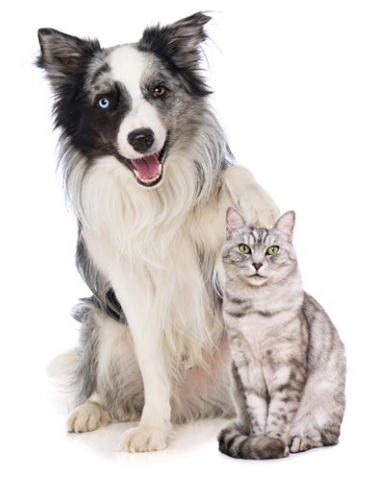 Dogs
Dogs
4+ MIN
22/03/2021
Por María Candelaria Carbajo
What is the Relationship between Pet Food and the hair of Cats and Dogs?
The hair of dogs and cats is such a characteristic factor of the different breeds and species that it is, even in many cases, what makes a person can choose for one breed or another. In this article we will tell you the importance of pet food when it comes to preserving the hair of animals and the different options that we can offer to pets in our Industry. Many Dogs and Cats suffer from hair problems that manifest as persistent shedding, obsessive grooming, paw chewing, bald patches, or skin rashes. However, the hair responds to a cyclical process. Hair shedding is a normal physiological process, common to many species of animals (and even humans). The truth is that, in Dogs and Cats, taking into account it's more visible (and in many cases, annoying for their owners). In these species, the shedding must occur once or twice a year: in the transition from winter to spring, and from summer to autumn on some occasions. This is known as a seasonal shedding, which is normal, necessary, and healthy. Now, the problem appears when a Dog or Cat constantly sheds its hair, we could even say that throughout all the seasons. Does the food given to the pet have to do with these events? Are there ingredients that positively or negatively affect the fur of animals? First and foremost, it should be noted that a continuous shedding of hair indicates that there is an excess of waste in the pet's system that is trying to eliminate. Among the possible causes of a continuous shedding of hair, poor quality food is the main one, followed by: • Overfeeding • Unidentified food allergy or intolerance to an ingredient in the formula • Excess fat and protein intake These factors can lead to the accumulation of toxic waste in the system and a variety of problems. What can we do from the pet food industry? There are certain components that we can take into account when making a new formula or improving an existing one: • Hypoallergenic food: After years of studies and tests, it could be said that, today, formulas with whole grains give excellent results; secondly, there are potatoes and buckwheat. In the case of dogs, a natural, healthy, easily digestible food, rich in complex carbohydrates and low in protein and fat is the closest thing to an ideal formula. • Overfeeding: Although in this sense there is not much that we can control from the industry, what can be done is to raise awareness and inform through the packaging of each of our products about the importance of respecting the amounts recommended by veterinary nutritionists. You have a recent article where we talked at length about this topic. Overfeeding a pet will cause the body to receive more of what it needs and consumes, even if the food is of excellent quality, so it will accumulate all these components in the form of toxins. Hair loss in dogs It goes without saying that a food with a complete and balanced formula helps to keep the cycle of coat change unaltered. Still, in many cases, what is good for one dog or breed may not be good for another. The ingredients that today help prevent excessive hair loss in dogs are: • Fruits and vegetables, due to their high omega-6 content. • Royal smoked salmon, due to its high omega-3 content. • Protein from brown rice. • Omega-3 and omega-6 fatty acids: Omega 3 and 6 fatty acids provide a lot of nutrition and hydration to the skin and coat, especially in breeds with a tendency to have dry, sensitive or dull skin. The balance between these two acids is what achieves a shiny and healthy coat. • Salmon and trout flour. • Antioxidants, prebiotics and probiotics. Hair loss in cats In the case of cats, and especially those with long hair, the formula of the food can make a big difference, both in the aesthetics and in the health of the hair. The shiny coat of a cat can have up to 1,200 hairs per square centimeter. With what ingredients can we try to take care of it and keep it healthy, shiny and smooth? • Pure coconut oil: Helps to hydrate the skin, especially sensitive skin prone to allergies or redness. At the same time, it improves the appearance of the hair, because it provides shine and softness from within. Prevents excessive loss and promotes healthy growth. • Zinc and vitamins C, E, A and B: This set of vitamins promotes the synthesis of keratin, something essential for a healthy, elastic, thick and shiny skin and coat. • Biotin: Vitamin B complex that helps promote healthy tissue growth. • Vitamin E: This vitamin is a natural antioxidant that helps protect your pet's skin against free radicals that could damage skin cells. • Chicken flour and brown rice. Summary Hair, beyond being characteristic of each race or species, has its own functions, such as providing sensory data and protection. Beyond aesthetics, it is essential to emphasize raising awareness among the pet-owning public about which food is most suitable for each species or breed and how to recognize when the hair is in good or bad condition. Without a doubt, a balanced and complete formula in nutrients, vitamins, minerals, proteins and carbohydrates will do its job and will keep the animal healthy and cute. Even so, you must always take into account reinforcing the importance of respecting the quantities, as well as researching or consulting about the indicated food for each Pet. What ingredient do you think is the most suitable to add to pet food formulas? By: All Pet Food
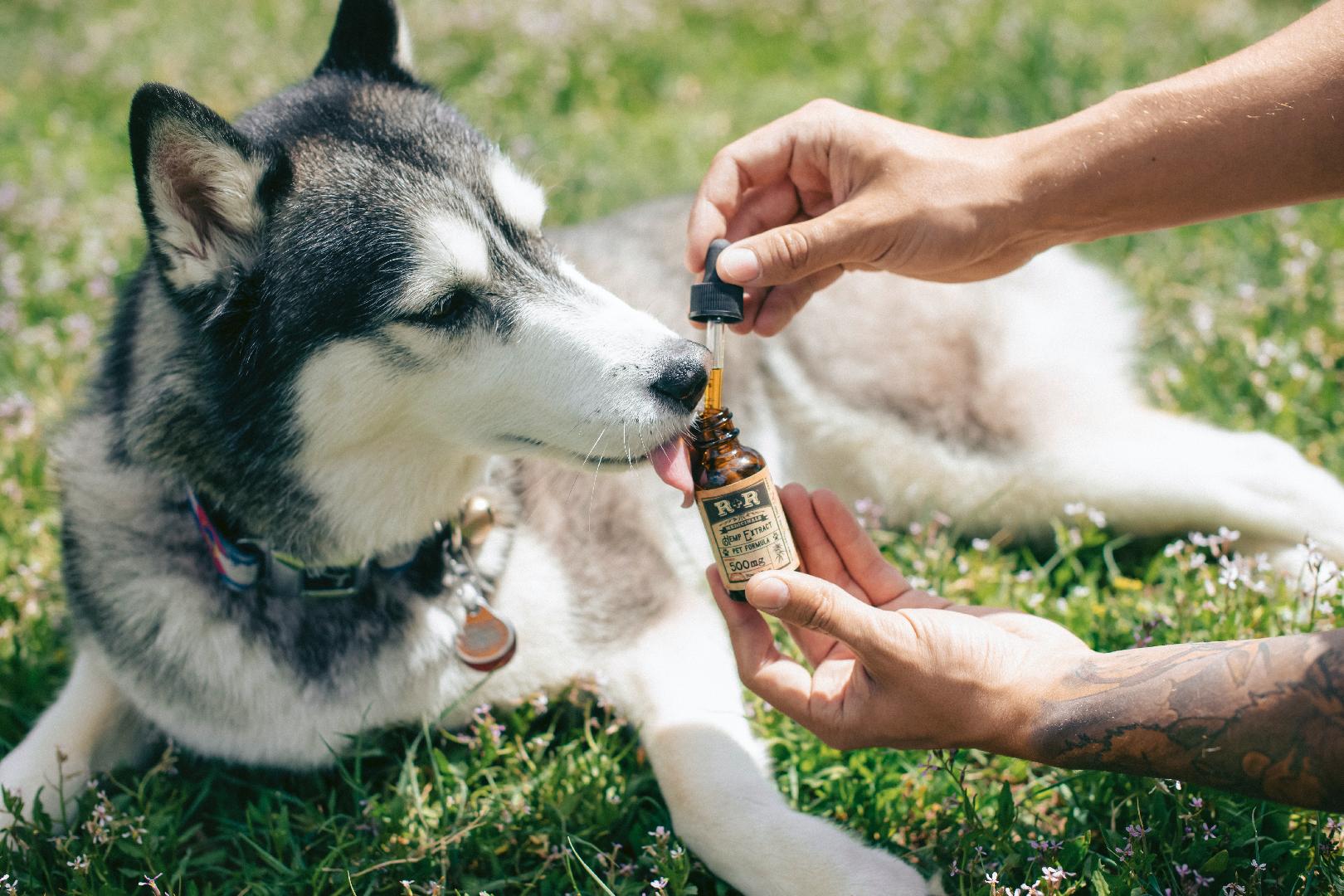 Formulation
Formulation
5+ MIN
18/03/2021
Por María Candelaria Carbajo
Can Food affect Anxiety in Pets?
According to one of the most recent studies, 70% of the dogs analyzed suffer from symptoms or have a tendency to suffer from anxiety, a considerably high number. Now, what can be done, from feeding these pets, to reduce their anxiety levels? In this article we will tell you if there is the possibility of reducing stress and anxiety in pets through pet food and how it can be implemented. First: what is it that causes anxiety in dogs? It must be remembered, first, that a dog can suffer from anxiety for several reasons, including: • The separation of the owners from him (even for a working day of 8 hours). • The phobia of loud noises, such as vacuum cleaners, electrical storms or fireworks. If the dog has a trauma that relates to a sound, he will also become more anxious when he hears that noise or a similar one. • Social anxiety, which manifests itself when there are more people than he is used to, and he can react either shyly or violently. In the case of Pets, and especially dogs, they are animals that learn through experience, so you can work on providing experiences with which you learn to deal with those elements that trigger anxiety. Even if a dog had a traumatic situation, the anxiety he feels when listening to, seeing or perceiving a certain element or object can be reversed, even if he needs a little more time and dedication. Now, the big question that concerns us is: Can food have a positive or negative influence on anxiety levels? We have the answer: if a dog's diet is adequate, it can significantly improve and decrease anxiety and stress levels. Rather as a holistic treatment, which contemplates the animal in a comprehensive way and not only from a neurological or psychological point of view, feeding is a factor that can trigger or reduce an animal's anxiety and alertness. What can be done, from the industry, to help reduce anxiety levels? Several studies have tied the effectiveness of some implementations in food. We will list them below for you to evaluate them and, perhaps, produce a new anti-stress pet food formula. Increase L-tryptophan This amino acid generates serotonin, a neurotransmitter especially involved in the control of behaviors such as aggressiveness and anxiety. An increase in dietary levels of L-tryptophan will consequently lead to greater synthesis and utilization of serotonin, resulting in more stable emotional states. This result has been tested in both dogs and cats. L-Tryptophan can be found as an added supplement or in foods like lentils and chickpeas, and its availability depends on competition with other amino acids for blood transport. What causes this amino acid? In simple words: a feeling of relaxation. Increase alpha-Casozepine This supplement arises from the hydrolysis of casein, the main protein in milk. Its function is to enhance GABA, the main inhibitory neurotransmitter of the central nervous system, which participates in: Inhibition of neuronal activity. The management of behavior, cognition and the body's response to stress. The control of fear and anxiety when neuronal overexcitation occurs. Its main effect is similar to that of an anxiolytic, but without the adverse effects, and it is generally used in conjunction with the amino acid L-tryptophan. Low protein content in the formula This can be an alternative to make foods that help reduce anxiety. As we discussed earlier, serotonin is a neurotransmitter that has a relaxing effect. Reducing the consumption of protein impacts the production of serotonin, thus increasing that feeling of calm and / or relaxation. This protein reduction also has a positive impact on the availability and absorption of L-tryptophan. High vitamins content The deficiency of certain vitamins can lead to a psychological imbalance in dogs. You can take into account and evaluate increasing the dose of the following vitamins, if you are evaluating making or improving the formula of the anti-stress food. The lack of vitamin A leads to fatigue and physical and mental anxiety. Vitamin E maintains cognitive abilities in condition and prevents anxiety. Vitamins B1, B6 and B12 contribute to the mental balance of dogs. So far we have seen all supplements that can be incorporated into pet food to enhance its anti-stress function, but are there natural foods that have a "calming" effect on dogs? Yes, there are, and here we tell you the ones that have the greatest benefit: Blueberries: Provide many additional vitamins, minerals, and antioxidants, which can help reduce the effects of stress. Kale: Swiss chard, spinach, and green leafy vegetables generally contain a high level of vitamins A, B6, C, and K, calcium, magnesium, copper, potassium, and iron. Kale specifically is also a great source of fiber, antioxidants, phytonutrients, and carotenoids. Sweet potatoes: it is one of the healthiest foods in the world. It has antioxidants, vitamin E, A, B6 and C, calcium, iron, folic acid, potassium, copper, thiamine, and iron. Potassium especially helps to maintain fluid and electrolyte balance, which has a positive impact on reducing anxiety. Beef: It is considered a natural antidepressant due to its content of vitamin B, folic acid and pantothenic acid (vitamin B5), which are excellent for controlling anxiety. Vitamin B5, in particular, enables the production of anti-stress hormones in the adrenal gland, which controls the release of cortisol. Turkey: it is a great source of L-tryptophan, the precursor amino acid of serotonin that we presented before. So what can we do from the pet food industry? From our Industry, the best we can do is focusing on creating and continuously improving food formulas adapted to the needs of these pets, which are, unfortunately, more and more. It is also important that, if you already have an anti-stress or anti-anxiety food, you inform the owners and consumers that, although it is a fundamental factor, it is not enough; Once again, food packaging can be used to raise awareness and also generate a more solid, respectable brand that is connected to its consumers. Conclusion A dog food specially formulated to reduce stress levels will not cure an anxious animal. Still, it can help to significantly decrease behavior and other inconveniences resulting from anxiety and stress. If, from our side we take care to inform the importance of combining a suitable food with a behavior improvement program, pets, who wait for our food every day, will suffer less stress and will be happier. Did you know that including any of these supplements or foods you can help reduce stress? Tell us, we need your opinion. By: All Pet Food
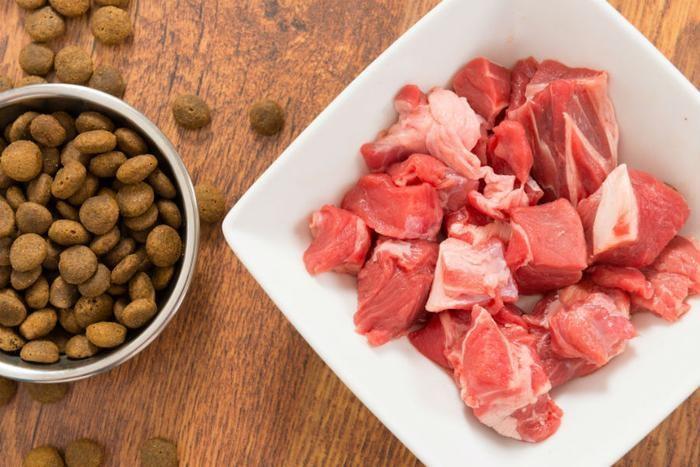 Trends
Trends
4+ MIN
16/03/2021
Por María Candelaria Carbajo
Freeze-dried Pet Food or Raw Meat - What are the Benefits?
Today, dog food is available in a wide variety of formats, flavors and sizes. The best known are kibble and canned feed, but there are also other options. For some time now, freeze-dried food is taking on more and more relevance. In this article we will tell you what are the advantages and disadvantages of freeze-dried dog food and what are the challenges when incorporating it into our food offer. As we discussed in a previous article, pet owners increasingly have a highly humanized treatment of their pets. One consequence of this is the need and demand for more natural, fresh and nutritious food. What is freeze-dried food? Faced with this growing demand, freeze-dried food appears. With the aim of developing the most complete food at a nutritional level, this 100% natural option arises, made with specific processes that maintain all the properties of the components. This type of food is obtained through freeze-drying, a process similar to dehydrating food, in order to increase its durability. Essentially, it is a special way of drying the raw material to remove water thanks to the product being frozen, the pressure is reduced and the water it contains is sublimated (it becomes steam water). Carrying out this process repeatedly results in the elimination of practically all the liquid that composes it. Meat that has undergone a freeze-drying process gives us the possibility of offering a product that is as similar as possible to raw meat, but the best thing is that it preserves all its benefits and nutrients without running the risk of the pet contracting possible diseases bacterial. It is then packed in an airtight package to prevent spoiling. In general, freeze-dried food is used as a supplement to the daily ration of food for dogs. Freeze-dried and dehydrated food, are they the same? The process may seem very similar, but there are differences between these types of foods. The main one is that, in the freeze-drying process, 99% of humidity is eliminated, while the food subjected to a dehydration process loses up to 95% of humidity. Thus, to achieve a lyophilized food it must be frozen, while this stage does not participate in the dehydration process. What are the advantages of freeze-dried food? Some of the benefits of foods that go through the freeze-drying process are: • The original appearance and shape of the food is well preserved. • It does not contain chemical additives to extend the conservation, and even so its durability is prolonged, since, as it has no water, it does not perish. • It has a high level of retention of natural aromas and flavors, which helps its palatability. • Preserves all the nutrients. • Contains no cereals. Why should dogs eat a raw diet? Trends are increasingly prevailing in the pet food market; One of them is that there are dog owners who choose to feed them raw products, since it is the closest thing they would eat in their 'natural habitat'. And, although it is true that raw food has certain remarkable benefits, such as ... • Coat improvement • Whiter teeth • Fresher breath • Better weight balance • Better digestion It also happens that a balanced food already contains all the nutrients that today's dogs need (which are not the same needs as those of a dog of long ago). That is why it is advisable to supplement balanced food with freeze-dried food treats or snacks, to create a perfect balance between the convenience of the feed and the nutritional quality of the raw food. Important fact: Freeze-dried food creates less food waste As another of the market trends is sustainability and the reduction of environmental impact, it should be noted that freeze-dried food, by not perishing, considerably reduces the waste of expired or spoiled food. Does freeze dried food have disadvantages? Today, the main disadvantage of this type of food is its cost. Although, as it does not perish and has greater durability, it could be sold and put on the market in large quantities and that would reduce the value for the final consumer, the truth is that the limited supply still manages costs that are a bit high and, at first glance , the buyer may not know the benefits and therefore not buy it. Another considered disadvantage is that this food may have a higher fat content than the 'regular' food. Which are freeze dried dog food offers nowadays? Currently, in the international market you can find various options of this type of food: Grandma Lucy's: is an American brand with an exclusive offering of freeze-dried foods. Among its variety, there are foods: • Chicken (26%), fruits and vegetables such as blueberries, apples and celery. • Chicken candy type (32% protein and 17% fat). True Instinct, the American brand: has two options for sale: one 100% chicken and the other 100% beef. They do not contain additives, flavorings, colors or preservatives. Stella & Chewy, this company uses only meat from free-range animals free of hormones and antibiotics. Their offer, which varies mostly between chicken and rabbit protein, offers a level of up to 42% protein. Natuplus, the Argentine Pet Food company: offers 100% freeze-dried snacks: lamb, fish, meat, chicken and liver. Instinct Chile, has an offer of freeze-dried food for dogs with salmon, duck, cow and chicken meat. Summary Freeze-dried dog food provides minimally processed nutrition, which appeals to pet owners looking for an alternative to plain kibble. It is usually a good alternative to incorporate into the offer of those producers who have a qualified customer profile and can end up betting on a little more expensive food, but with a high nutritional quality for their pets. By: All Pet Food
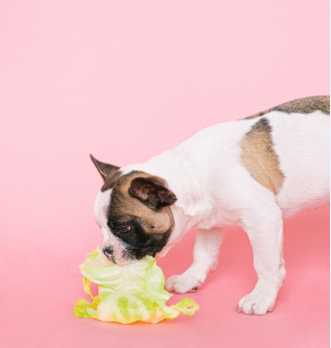 Trends
Trends
5+ MIN
12/03/2021
Por María Candelaria Carbajo
Is it Possible to Feed Pets Only Plant Ingredients?
Veganism is a lifestyle that a few years ago has only gained prominence among teenagers and young adults. Given that pet owners who are in this group try to feed their animals in a similar way, it was expected and foreseeable that, little by little, they would begin to try alternative foods that did not include animal raw material. In this article we tell you what the main debate is and whether or not it is believed feasible to offer dogs and cats a 100% vegetable diet. Some vegan people are not satisfied with giving up the consumption of animals and derivated themselves, but they also want their pets to do so. We must first clarify the physiological conditions of these two species. Dogs are carnivores, but facultative; In other words, they have all the characteristics of carnivorous animals at an anatomical and physiological level, but they can also digest and assimilate nutrients such as carbohydrates. Ultimately, a dog could get all the necessary energy, nutrients and protein from a plant-based diet. For their part, cats are more complicated against Veganism. This species is only carnivorous, which means that it does need to consume material of animal origin. What is the moral debate? Although Veganism is a topic that generates a lot of controversy among human beings, it also does so when it comes to talking about pets. Those who are in favor of feeding their pets with food with ingredients of animal origin assure that this is the natural food chain of life, especially for animals. However, those who are inclined towards a 100% vegetable diet for their colleagues, affirm that, in reality, if we wanted to respect the food chain, pet food would have to have more than beef or chicken meat, bird meat, mice ... In short, smaller animals that both dogs and cats could, indeed, have hunted in that natural food chain. Why can't cats eat vegan food? Faced with this species, to this day, it is ensured that cats do not have the capacity to feed themselves adequately with food only of plant origin. Your digestive system is not capable of producing certain proteins, such as taurine. In addition, the system of felines is considerably more intolerant to carbohydrates than that of, for example, dogs, so that the alternative options to meat are increasingly reduced. Even so, despite the difficulties, there are some companies that are committed to achieving a suitable (and healthy, mainly) vegetable pet food formula for cats, such as Ami or Veggie animals for example. However… Dogs, can be vegan? The dog is, historically, the "best friend of man"; and this legend began, some voices say, thanks to the fact that it approached humans in search of food. And that food they provided was exclusively meat. As we briefly advance you in the introduction to this article, the truth is that dogs, having amylase genes, have the ability to digest the starch present in vegetables, which could allow them to adapt, through the centuries, to a more vegetable diet. Wild Earth is an example of vegan dog food. Its founder began looking for a viable formula to reduce the amount of contaminated pet food items that had to be disposed of, as well as the contamination that occurs in the process. In the United States, in 2017 alone, the carbon emitted from meat treated for animal consumption was estimated to be about 64 million tons of carbon dioxide, the equivalent of driving 13 million cars for one year. Today the company is constantly growing, and as stated on its website, 86% of dog owners have reported a positive change in the health of their pets after choosing Wild Earth to feed them. So what are the food requirements for cats and dogs, respectively? In the case of dogs, having a system that allows them to digest more nutrients, creating a vegan food formula is easier. The essential thing is that they receive plenty of protein, calcium, vitamin D, and the amino acids L-carnitine and taurine. These last two must be added to the formula as a supplement, since otherwise the animal will not get enough. Now, on the other hand, producing vegan food for cats is a bit more complicated. As they cannot biosynthesize the large amount of vitamin A they need from carotene, they must obtain it from food. Otherwise, they may have hearing loss, problems with the skin, bones and / or intestinal system. Also, like dogs, they need to obtain taurine from beef, poultry, and / or fish. The problem is that if a cat does not have enough, it is at risk of developing dilated cardiomyopathy (DCM). In this case, it happens that the heart becomes weak and prevents the correct supply of oxygen and blood to all areas of the body. Felines also need arachidonic acid; These ingredients are essential for your well-being, so they must be present in your food formula, whether vegetable or not. And in Latin America, are there any options? Sure, although, as you already know, trends arrive in Latin America with a certain delay, there are already vegan pet food options available, such as: • Veguis, the first 100% vegetable balanced food of Argentine production. • Kentupet, food of Chilean origin without gluten, cholesterol, vegan and hypoallergenic. Summary Despite the contradictions that veganism generates in pets, the truth is that it is estimated to see, little by little, an increase in demand in Latin American countries, as this lifestyle gains more youth and adults. Currently, it is estimated that there are more than 100,000 vegan dogs in the United States, and in the United Kingdom about half of this number. It is predicted that, logically, behind each pet that eats 100% vegetable pet food there is a vegan owner, so it is highly expected to perceive an increase in the consumption of the food with this type of formulas. The best the Industry can do is stay constantly up-to-date, both in what consumers want, as well as in finding the healthiest and most beneficial way to care for pets on the market. Tell us what you think of this new way of feeding pets? By: All Pet Food
 Micro Ingredients
Micro Ingredients
5+ MIN
11/03/2021
Por María Candelaria Carbajo
Aflatoxin in Pet Food: Definition, Risks and Challenges
In recent times there has been news about food or lots of pet food contaminated with aflatoxin that have been recalled. But what is aflatoxin? What does it cause in animals? In this article we tell you what we are talking about when we talk about aflatoxins, where they come from, what is the risk of consumption for animals and how to avoid it. In context The US Food and Drug Administration is currently investigating certain pet foods that are estimated to contain dangerous levels of aflatoxin for animal consumption. The Sunshine Mills recall includes pet food that was distributed both within the United States and in Japan and Colombia. However, analyzes and studies on its residues and the susceptibility of animal species (especially domestic, swine, bovine and poultry) on the toxicity of aflatoxin date back to 1960. But what's aflatoxin all about? Pet food formulas include raw materials such as corn, soybeans, rice, wheat, and poultry, cattle, and fish. Many of these raw materials, mainly those of plant origin, are susceptible to fungal contamination that can lead to the production of mycotoxins. Mycotoxins are a group of secondary metabolites produced by various filamentous fungi that can cause harm if ingested. In this case, aflatoxin is a type of secondary metabolite (mycotoxin) produced by certain species of fungi. It is highly toxic and carcinogenic (for both animals and humans), and more for dogs than for other animals, and is found in agricultural crops like corn, peanuts, and hard-shelled nuts, such as walnuts, among others. The fact that they are a secondary metabolite means that they are not necessary for the growth or reproduction of the fungus. In fact, not all fungi are capable of producing mycotoxins. The main aflatoxins (AF) consist of aflatoxins B1, B2, G1 and G2 produced by certain toxigenic strains of fungi Aspergillus flavus, Aspergillus parasiticus and Aspergillus nominus. If present in high levels in food, aflatoxin can cause disease in animals, and even lead to death. The most common symptoms are loss of appetite and energy, vomiting, jaundice, and diarrhea. Animals that show few symptoms can even suffer permanent liver damage. Scientific evidence? Several studies have been carried out that converge on the same result: diets with concentrations higher than 60 μg / kg (micrograms per kilo) of aflatoxin B1 can already cause aflatoxicosis, the disease caused by the consumption of aflatoxins. However, it always depends on each animal and its general state of health, as well as factors such as age and hormonal and nutritional status. Pregnant and young animals have been found to be the groups most sensitive to aflatoxin B1 toxicity. On the other hand, it has been claimed that, although the production of contamination can occur after harvest under improper storage conditions, large-scale contamination usually occurs in the field itself. There are even many toxigenic fungi that produce mycotoxins only under specific environmental conditions in terms of humidity and heat: grains stored with a high degree of humidity (> 14%) at warm temperatures (> 20 ° C) can become contaminated. These conditions allow what are known as "hot spots" to occur in stored grain and become contaminated with aflatoxin. Although, traditionally, mycotoxin-producing fungi have been divided into two groups: "field" (phytopathogens) and "storage" (saprophytes). The secondary toxic metabolites of fungi can represent a significant risk, both for human and animal health, if the grains used to make feed (or the animals used have been fed with these grains) are colonized by toxigenic fungi. Preventive strategies to avoid aflatoxin contamination The reported and recalled batches of food have reaffirmed the need for industry manufacturers to dedicate more resources to certify the quality of the raw material used for production. The challenge that arises is that it must be certified that all products and raw materials within the chain, from what the cow or pig consumed, must be verified as free of carcinogenic mycotoxins. Consequently, most companies in the United States have already increased the control of selection and supply of ingredients used in pet food: a mycotoxin control program from field to table must include critical control points, This will require experts in the interaction of toxigenic fungi with crop plants, their methods of reproduction, harvesting, and current (and optimal) storage conditions to prevent spread. Aflatoxin in food in Latin America In Latin America, aflatoxins have been detected as natural contaminants in a large number of agricultural products and in almost all staple foods. In this geographical area, aflatoxins have also been found in oilseeds such as sunflower and soy and in unrefined vegetable oils. The level of concentration of aflatoxins accepted in food varies according to each country and its way of legislating; however, certain similarities and trends can be found between the European Union, the Association of Southeast Asian Nations and MERCOSUR. This has been done in order to harmonize and facilitate international trade. In Latin America, a high incidence of aflatoxins has been found, especially B1 in agricultural products such as corn, rice and peanuts, among others. And, although there are regulations that regulate the amount of mycotoxins, we need to reinforce them with mandatory resolutions that specify concentrations according to group and type of food, frequency of consumption and population risk, both in animals and humans. Currently, aflatoxin decontamination methods include physical, chemical and biological methods and are often used in combination when food and feed are already contaminated in order to eliminate or at least reduce toxicity. The most used method in the last 30 years has been HPLC or high performance liquid chromatography. Summary The application of a traceability and control plan "from farm to the table" is necessary for not only each of the products and raw materials involved in the animal feed that reaches the mouth of pets, but it is also required specific knowledge of each of the stages in order to know their risks. To evolve and improve, it is essential to have reliable analytical methods for the detection and quantification of aflatoxins in food. by: All Pet Food
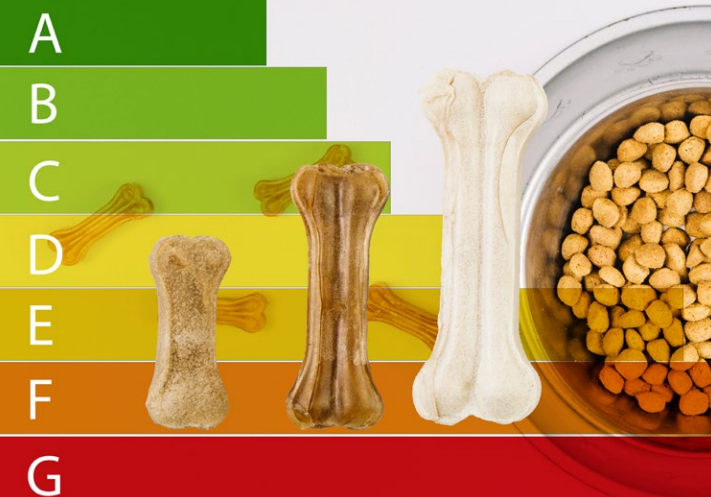 Manufacturing Process
Manufacturing Process
4+ MIN
09/03/2021
Por María Candelaria Carbajo
Energy Efficiency and Sustainability in Pet Food production
In recent times, sustainability has been the subject of the agenda for many countries and organizations, especially regarding what production processes imply. And it is that caring for the environment is increasingly important: we have realized that we only have one. In this article we discuss the environmental impact of our industry and its production processes. First, what is energy efficiency basically? Energy efficiency as the efficient use of energy. A process or element is said to be energy efficient when it consumes less than average amount of energy to perform. Energy efficiency seeks to protect the environment by reducing energy intensity. What is the general context? Environmental concerns and the depletion of fossil fuels are forcing the development of policies to reduce greenhouse gas emissions. Energy efficiency is a topic of great debate especially in developing countries. The industrial and manufacturing sector (whatever the end product) has a significant responsibility for environmental pollution and the use of its resources, especially in the depletion of fossil fuels and carbon dioxide emissions. This is why, a few years ago, the implementation of energy efficiency strategies began to be evaluated. This is because the food industry, both for humans and pets, is booming and growing, so it is necessary to drastically optimize the use of resources in order to meet demand with a degree of controlled environmental impact or, at least, acceptable. Sustainability is imposed throughout the industry Let's remember that sustainability is one of the most booming trends in the pet food industry. In a 2019 report by the Pet Sustainability Coalition, it was reported that 91% of industry professionals already anticipated an increase in demand for sustainable pet products, and 50% expected demand to grow rapidly. Sure enough, his predictions were correct. Sales of snacks for pets from sustainable production and consumption grew 70% from 2015 to 2019. Energy efficiency in the Pet Food Industry According to the research team of Dr. Peter Alexander from the University of Edinburgh, in recent years the emission of greenhouse gases related to dry feed production represented between 1.1 and 2.9% of total agricultural emissions, which is equivalent to between 56 and 151 tons of carbon dioxide. Worldwide, between 41 and 58 million hectares of agricultural land is dedicated to the production of raw material for pet food, a percentage of between 0.8 and 1.2% of the world total. The production of pet food represents 5 to 11 km3 of fresh water use, which is between 0.2 and 0.4% of the water used for agriculture. Approximately 70% of the greenhouse gas emissions associated with the production of pet food comes from animal products, including meat and by-products. In the case of the use of water, approximately between 50 and 60% is related to agricultural products within the production process of pet food. According to a survey by Emmy Koeleman (2019), 30,000 pet food factories distributed around the world manufactured more than one billion tons of feed. Of this exorbitant amount, 10% goes to pets and fish, 40% for poultry, 30% for pigs and 20% for ruminants. While how much Pet Food production contributes to climate change is still a somewhat broad estimate, the same team calculated that dog food may be associated with higher greenhouse gas emissions and land use than dog food. cats. In the same way, they affirm that premium quality food, both for dogs and cats, can cause a greater environmental impact. Premium brands contribute 3.3 times more to climate change compared to conventional cat food and 2.3 times more than conventional dog food. Dog food accounts for 1.6 times the emissions emitted from the cat food production process. In 2017, PLoS ONE published an estimate on the environmental impact of the pet food industry, which shows that the ingredients of dog and cat food represent approximately between 25 and 30% of the impact caused by the meat industry in the U.S. Likewise, the same value of greenhouse gases is assigned to the treatment of meat (muscles) used for human consumption, as well as for by-products destined for our industry. It is important to emphasize that our industry makes a great contribution with the use of by-products, since it is avoided that parts of animals of high nutritional value are wasted. What can be done to improve the sustainability of the industry? Although, when looking at the numbers and statistics, we are a bit far, as an industry, from having numbers of pollution or emission of tolerable gases by the environment, something can always be done, since you have to start with something, right? This is the case with DSM Animal Health and Nutrition, which launched the We make it possible initiative to promote compliance with the United Nations Sustainable Development Goals. "By 2030, we seek to reduce our greenhouse gas emissions by 30%, reach up to 75% to use renewable sources for energy, and increase our energy efficiency by 1% per year." David Nickell, vice president of sustainability and business solutions for DSM. Summary While we are still making unsustainable use of resources and, consequently, an excessive increase in climate change, many companies in the Pet Food Industry have already started to make efforts to improve efficiency and reduce pollution. Starting with small acts such as setting SMART objectives to achieve a certain energy efficiency, analyzing the consumption of each production process, or changing the lighting to LED already begin to make a difference. The first step to achieve substantial and sustainable changes is to become aware of the seriousness of the matter, and from our side, we try to provide reliable and updated information to make it available to everyone. Source: All Pet Food
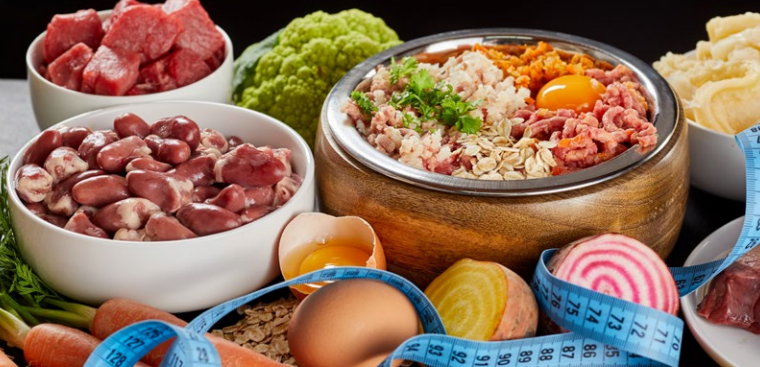 Barf Diet
Barf Diet
5+ MIN
05/03/2021
Por María Candelaria Carbajo
What is the BARF Diet and its impact on the Pet Food Industry?
The world and trends are updated with increasing speed, and in the pet food industry we see new ways of feeding and caring for pets.
Currently, the trend is increasing to feed domestic dogs and cats in developed countries with raw meat with commercial preparations or homemade recipes. In this article we`ll talk about the B.A.R.F. diet: what it's all about, its benefits, characteristics and risks.
What is the BARF diet?
The B.A.R.F. comes from the term Biologically Appropriate Raw Food or biologically appropriate raw foods, and refers to a type of diet based on non-heat-treated animal products, that is, raw.
Founded by veterinarian and nutritionist Dr. Ian Billinghurst, this type of diet maintains that, due to the natural evolution of pets (and genetic modifications), a raw diet composed of fresh meat and vegetables is the most appropriate today.
Raw meat-based diets include raw ingredients from livestock or wild animals, and include raw materials that can be prepared at home or purchased ready-made, such as fresh, frozen or freeze-dried versions.
What are the main characteristics of a BARF diet?
A raw diet should be rich in protein, moderate in fat, and low in carbohydrates. Some raw materials that make up this diet are:
• The meat (muscles and organs)
• Fleshy bones
•Vegetables and fruits
Which are your main benefits?
The truth is that, to this day, several benefits of this type of diet are known, including:
• Slender and fibrous body structure
• Better coat
• Cleaner teeth and fresher breath
• More energy
Another important and considerable benefit of the B.A.R.F. is its positive environmental impact. Raw food reduces the ecological footprint, since it considers in the diet parts of animals that are not consumed by humans, such as organ meats, which reduces waste in the human food production chain.
Does the BARF does it pose any risk to dogs?
One of the risks of incorporating raw food into a pet's diet is that the owners select and prepare the food in a homemade way. This can result in providing unsuitable food or producing a nutritional deficit in the animal. The products that are consumed in a BARF diet, if they are wrongly treated, can cause infectious diseases, and that is why any manufacturer that decides to venture into this type of food to offer it to the market must take into account the microbiological safety of each one of the components and stages of production (cold chain in all stages of production and storage, for example). Another emerging risk is the introduction of antimicrobial resistant bacteria.
• Raw Pet Foods commonly exceed hygiene thresholds for Enterobacteriaceae counts. These bacteria often exhibit resistance to critically important antibiotics, such as extended-spectrum cephalosporins, for example, and pets fed a B.A.R.F. they may pose an increased risk of spreading such bacteria. Other infectious organisms that can cause problems are Listeria, Toxigenic Shiga Escherichia coli (STEC), some parasites such as Toxoplasma gondii and exotic agents such as the zoonotic cattle pathogen Brucella suis, recently found in raw meat in the European Union and the United Kingdom imported from Argentina.
• Some 2013 research on raw diets (both homemade and commercial) exposed some nutritional problems such as an imbalance of calcium, phosphorus and the lack of some specific vitamins.
• Certain bioavailability problems are also considered as an additional risk of deficiency, which was demostrated in a study in which a raw whole rabbit-based diet was used that contained the adequate amount of taurine in the analysis prior to being consumed, Even so, the young cats that consumed it presented fatal cardiomyopathies due to taurine deficiency months after implementing this type of feeding.
What evidence and scientific evidence is there so far?
On the one hand, there is evidence to affirm that raw feeding improves the altered gut microbiome and the quality of stool.
The wolf has been used as a model by proponents of raw food, relying on its limited ability to digest carbohydrates, which form a substantial part of conventional dog food. However, the domestic dog is genetically altered compared to its wild ancestors, and has a greater ability to digest starch.
Other differences between domestic and wild canids include balance between energy and other nutrient needs, in addition to longevity.
On the other hand, current experience in feeding canids in zoos, including wolves, supports the benefit of using conventionally processed dog food in a majority percentage of the diet.
Even so, and despite the various voices that position themselves against the B.A.R.F. diet, some studies were carried out with the aim of providing verifiable evidence for some claims made based on raw food:
• In the results of a study conducted in 2017, it can be seen that fecal bacterial diversity appeared to be higher among six dogs fed raw products compared to five fed that consumed balanced food.
• A small study carried out with boxer dogs that compared the effects of feeding us with raw beef together with a supplement with a balanced food diet showed, through an analysis of metagenomic information, that smaller and firmer stools and some changes were found in the fecal bacterial community.
• A group of baby cats fed a raw diet (rabbit meat) also had a better quality of feces; however, the kittens that were part of a similar group but that consumed balanced food as their main meal grew continuously and proportionally, as did those that consumed the B.A.R.F.
In conclusion
The implementation of the B.A.R.F. diet is a growing phenomenon among pet owners in developed countries, the same ones who, in previous decades, received the convenience presented to them by the Pet Food and balanced feed industry.
The polarization on the merits of raw food and the benefits or emotional burdens that it entails is in force and will remain that way for a long time until it is adopted by a larger number of people or is repudiated and left aside.
For their part, the studies and analyzes still seem insufficient in terms of defining a specific position on the impact of this type of diet, although it is true that various adverse effects have been found. The data on the nutritional, medical, and public health risks of raw food are fragmentary, but are increasingly forming a compelling body of scientific evidence.
In any case, we consider that, to implement this type of food in the product line, it is essential not only to ensure that we strictly comply with the appropriate procedures but also inform through the packaging, of said products, how to handle them correctly and what is can or should (and should not) do with them.
Have you ever heard of this diet? Do you think it will prevail in the market?
Tell us, your opinion is very important for us
Source: All Pet Food
 Micro Ingredients
Micro Ingredients
4+ MIN
04/03/2021
Por María Candelaria Carbajo
Acrylamide in pet food What is it and what is the risk?
In this article we will tell you all about this component that can put the health of both humans and animals at risk. What is acrylamide? Acrylamide is an organic compound of the amide type. It`s formed in foods that contain starch during cooking or processing at high temperatures (frying, roasting,) and during industrial processes at 120ºC and at low humidity. This substance is generated by a natural chemical reaction, mainly between an intact carbonyl group reducing sugar and amino acids (asparagine, in most cases). The causative chemical process is known as the Maillard reaction, and it produces a color and aroma that are organoleptically palatable. It can be absorbed by animals and humans by ingestion, inhalation or through the skin. Regardless of the route of absorption, acrylamide distributes relatively rapidly to all tissues. What is the risk of consuming it? The main risk of acrylamide is that if an animal consumes it in very high doses, it can develop cancer. When ingested, the gastrointestinal tract absorbs acrylamide, which is distributed to all organs and is metabolized. From this process, glycidamide arises, a metabolite that, in animals, can cause the development of cancer. In studies carried out in laboratory animals, it was found that those exposed to acrylamide orally are more likely to develop genetic mutations and tumors in the mammary glands, testes, thyroid glands, harder and mammary glands, lungs, ovaries, skin and stomach, depending on the species. In addition, exposure to acrylamide can cause harmful effects on the nervous system, pre- and postnatal development, and male reproduction. How did we reach to this conclusion? In the case of humans, and although it is true that there is no consistent epidemiological evidence about its effect in increasing the chances of contracting cancer, both the US National Toxicology Program and the Joint Committee of Experts on Food Additives of the Food and Agriculture Organization consider acrylamide to be a problem for human health. Between 2011 and 2015, the FDA collected approximately 2,500 individual samples of human food products to study their acrylamide levels. These had characteristics similar to dry pet food, such as its ingredients, including grains and potatoes. Bakery products: between 10 and 70 ppb. Cereal-based foods: from less than 10 ppb to 1210 ppb. Potato-based foods: between less than 10 and up to 1,440 ppb. Lauren Robin, a chemist at the FDA, states that 'acrylamide is a chemical that can form in some foods, mainly those of plant origin, during the high temperature cooking process, such as frying or baking. Some foods affected by this component are potatoes, cereals, coffee, crackers or breads and nuts'. For its part, in the case of animals, in 2012 a study was conducted in the Czech Republic in which acrylamide levels were examined in dry food for dogs and cats, and it was found that the concentration of this compound in pet food analyzed was of a moderate level. The dry dog foods analyzed in this study yielded an acrylamide level of between 106 and 358 ppb. Pet food for cats, for its part, presented a level of between 66 and 269 ppb. But what does "moderate" mean? Is there a 'tolerable dose' for acrylamide? Acrylamide and its metabolite, glycidamide, are genotoxic and carcinogenic. Any level of exposure to a genotoxic substance can damage DNA and lead to cancer. This is why EFSA scientists conclude that they cannot establish a tolerable daily intake for acrylamide. Now, is there something we can do from the industry to prevent high levels of acrylamide in pet food? As a first measure, we must take into account or analyze the possibility of replacing, at least, a percentage of the amount of ingredients prone to increase acrylamide levels in the final product, such as potatoes and nuts. For its part, the FDA states that acrylamide production could be reduced by reducing the cooking time of foods. It is not yet known whether dehydrated and / or lyophilized pet foods using similar ingredients have the same or close to acrylamide levels as dry food. However, raw foods do have lower levels of acrylamide. Some scientists claim that a good alternative is the use of the absorption pulse differential voltammetry procedure for the determination and quantification of the acrylamide content in food and feed. In short, voltammetry is an electrochemical technique in which a certain electrical potential is applied to a working electrode immersed in a solution containing an electroactive species and the intensity of current flowing through said electrode is measured. In acrylamide measurement and calculation test studies, both in dry food for dogs and cats, they demostrated that the method has adequate precision to be used, which ranged between 0.6 and 1.7%, a variation that can be considered satisfactory. In conclusion Even today, there is a lack of data and studies on the effects of acrylamide levels in dry food for dogs and cats. The voltammetric procedure appears to be one of the most reliable, sensitive, rapid, and low-cost analytical techniques to date for determining acrylamide levels in food. Another option to start looking more closely at acrylamide levels is to perform acrylamide tests on each batch or on a regular basis to make sure not to touch high levels of this component and to keep it at a moderate level and not harmful to pets. The concentrations found in the pet food studies were relatively moderate compared to those in human food. However, there is no doubt that it is extremely necessary to pay special attention to this relatively new, carcinogenic and genotoxic component, to ensure that we reduce its intake to the smallest amount possible to care for each and every one of the pets that make success and sustainability of the industry. Have you ever heard about this compound? Share your opinion! Source: All Pet Food
 Market Information
Market Information
2+ MIN
02/03/2021
United Petfood Announces the acquisition of Cambrian Pet Foods
GHENT, Belgium, 2021-02-25 - International Pet Food producer, United Petfood, announced the acquisition of the British manufacturer Cambrian Pet Foods. The acquisition strengthens the position of United Petfood as full-service private label Pet Food producer and gives customers access to a complete range of inhouse made products. According to United Petfood's board of directors, "It is our goal to establish long-term relationships with our customers and be their preferred partner for the production of private label dry & wet pet food, biscuits and snacks. The acquisition of Cambrian Pet Foods allows us to extend our product range and be a one-stop solution for our customers. Rather than being merely a production partner, we want to guide our customers and work together to achieve success in their market by sharing our knowledge and creating high-quality products." According to Cambrian Pet Foods Ltd.s 's Cambrian Pet Foods´s Board of Directors: "It has been a genuine pleasure partnering with our colleagues, customers and suppliers to help the company grow and develop within our communities and the UK Pet Trade. For four decades, Cambrian has demonstrated, time and again, its resilience and its ability to innovate and grow while delivering consistent quality and service to its customers, pets and pet parents alike. We are appreciative the support provided by all who have been with us during our journey. Cambrian Pet Foods Ltd. Is a one of a kind in its field, and represents the creative work of a lifetime - We cannot think of a better, more capable, safer and more potent home than within the United Petfood Family as the journey of growth, development and improvement are continued." Cambrian Pet Foods was founded in 1982 and has a leading position within the UK pet food market. The family-owned business has three production plants in Llangadog, Pencader and Longridge and employs 130 people. The company is specialised in the private label production of dry pet food and wet pet food in both trays and cans. This takeover strengthens United Petfood's position within the pet food manufacturing market. In 2019 United Petfood entered the wet pet food market segment with the opening of a single serve wet pet food plant for pouches in Radom, Poland. Thanks to the second wet pet food factory in Llangadog, United Petfood is broadening its product offering and will now also be able to produce wet Pet Food in trays and cans. With three additional production plants, United Petfood Group operates now out of 17 pet food facilities situated in 8 different European countries. The takeover is in line with the strategy of United Petfood to reinforce and grow the business. The U.K. factories also bring additional experience, capacity and technological possibilities to the group. Source: United Petfood
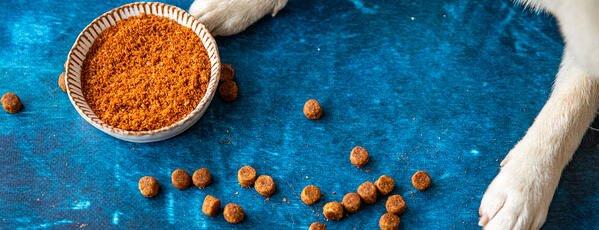 Animal Origin
Animal Origin
2+ MIN
25/02/2021
How important are the right omega-3s in a pet's diet?
Research shows that consumers are spending more money on their pets' food than ever before, with the sole aim to keep them healthy and happy. This can, however, only be achieved by a well-balanced diet. Omega-3s have many recognised health benefits for dogs and humans alike. Choosing a pet food that contains omega-3 is the first step you can take to ensure your pet can benefit from this important nutrient on a regular basis. But not all omega-3s are effectively utilized by pets. Therefore, choosing the right source is important. Not all omega-3s are the same Plant-based omega-3 in the form of ALA will have to be converted to EPA and DHA in order to give the same health benefits. However, the conversion rate of ALA to EPA and DHA is poor in pets, and less that 10 % will convert to these vital fatty acids. Hence, marine omega-3s are more effective that plant-based omega-3s. Krill are tiny crustaceans that are present in all oceans, holding a vital position in the marine food chain. Antarctic krill is a superior source of marine omega-3s, with a distinctive advantage when it comes to the form their omega-3s are made of. This is known as the phospholipid advantage. Recent studies have shown that the phospholipid-bound omega-3s from krill are more effective in raising omega-3 levels in a dog's body compared to triglyceride-bound omega-3s, such as those found in fish oil. Known as the foundation of all cells, omega-3s are more effectively incorporated into tissues cell membranes when bound to phospholipids. And this incorporation is crucial to obtain the health effects of omega-3s. Once in place in the cell membranes, the omega-3s EPA & DHA support the health of several vital organs, including the heart, kidney, liver, joints, brain, eyes, skin and coat. Krill is a superior source of omega-3s and much more Besides being a source of omega-3, krill is also naturally rich in marine proteins, choline and astaxanthin – a natural antioxidant that protects all body cells from oxidative damage. Krill meal (or QRILL Pet) is a 100% natural product, made only from whole Antarctic krill. Antarctic krill is protected from overfishing by CCAMLR and has obtained MSC certification assuring sustainable fishing practices, which makes QRILL Pet an attractive feed ingredient that ensures optimal health of pets in a sustainable manner. Source: Aker Biomarine
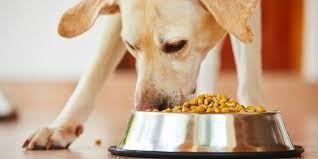 Animal Origin
Animal Origin
2+ MIN
24/02/2021
Is there a 6th flavor for Pets?
In this occasion I want to refer to an article on the perception of flavors in humans that I found very interesting and that in some way can contribute to the generation of greater knowledge about palatability in Pet Food. It is accepted that the human perceives 5 flavors that are: sweet, bitter, salty, acid and umami; this fifth flavor was added relatively recently and is linked to the glutamate rich flavors. Foods that contain this flavor are those that induce salivation, causing a pleasant sensation throughout the mouth. The knowledge that we have in pets is that cats, unlike dogs, do not have a strong perception or taste for sweet, salty or umami, while they have a good inclination for acidic flavors. According to a scientific study conducted by researchers at the University of Oregon, humans are able to recognize a sixth flavor, named "starchy." The study was carried out to show that humans have the possibility of differentiating this flavor from the rest of the existing ones. For this, 22 people were offered liquid solutions with different dissolved amounts of glucose-based polysaccharides. At the end of the test, 100% of the people admitted to having perceived a taste of "bread" according to the Western volunteers and "rice" according to the Eastern volunteers. Until now, the scientific community thought that humans detect the taste of starches by identifying their sweet molecules. However, with this study, it has been shown that humans can distinguish this new flavor. What's more, the sample participants were able to do so even when the researchers blocked their sweet taste receptors. On the other hand, Juyun Lim, Director of the research, has ensured that they have not been able to identify exclusive taste buds to recognize this sixth flavor. Within the complexity of describing a flavor, we could say that the starchy taste would be like eating flour. The use in Pet Food of complex carbohydrates (starches) derived from the inclusion in the formulas of grains such as corn, wheat, rice and oats leads us to reflect on how important this type of research can be in the Industry Pet Food. Author: Miguel López
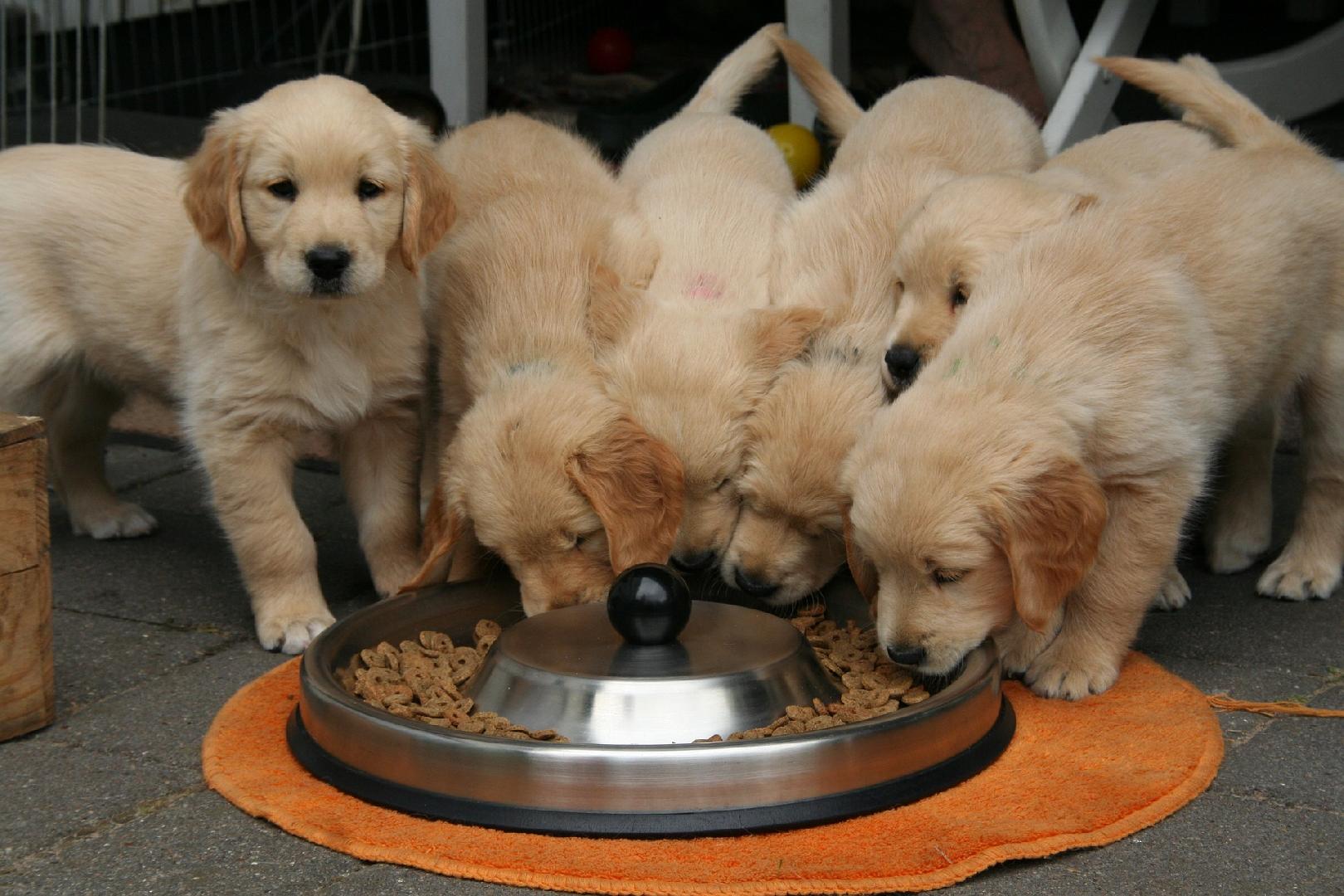 Dogs
Dogs
4+ MIN
23/02/2021
Por María Candelaria Carbajo
What is dilated cardiomyopathy, how can it be avoided and how is it related to pet food?
Dilated cardiomyopathy is one of the most recurrent diseases in dogs and cats, and is currently a major concern that challenges the entire Pet Food production industry. In this article we investigate the research and reports that analyze the relationship between this disease and the food formula for those animals that suffer from it consume or should consume, so we have to take action and offer solutions to these concerns in our market. What is dilated cardiomyopathy? DCM is a heart disease characterized by decreased pumping function and an increase in the size of one or more chambers of the heart muscle. This condition is acquired, which means that the animal was born with a normal heart, but has developed the pathology at some point in its life. In short, what DCM produces is that the heart enlarges and its walls become narrower, and the heart muscle begins to be unable to pump blood as it should. If left untreated, it can lead to the development of congestive heart failure (fluid in the lungs, around them, and in the abdomen) or sudden death. What is the context? Historically, dilated cardiomyopathy was mainly associated with nutritional deficiencies. In 2018, the US Food and Drug Administration (USFDA) launched an investigation into the potential link between some diets and canine dilated cardiomyopathy (DCM), as some correlation between development began to be noted of the disease and the diets that these animals had. DCM itself is not considered a rare or abnormal disease in dogs, what is striking in the cases studied is that many of these dogs are of breeds that are generally not genetically prone to this condition. Furthermore, most of the cases had diets with high concentrations of certain ingredients, and only a few were classified as "grain-free." While it is true that a small percentage of animals of these species may require a grain-free diet due to other types of pathologies or chronic conditions, the truth is that misinformation and ignorance about cereals has caused a large number of owners of pets opt for foods of this style without really knowing the consequences that could entail. What is known so far? Cooperative work between cardiologists and veterinary nutritionists and the USFDA has confirmed that the increase in this pathology in canines and felines is directly related to diets deficient in cereals. Affected dogs and cats have often been found to be fed non-grain diets that contain exotic meats (not chicken, beef, or fish), potatoes, sweet potatoes, and / or legumes such as lentils or chickpeas. Although the link between dilated cardiomyopathy and these types of foods has been confirmed, the exact cause is not yet known. Until now, it is believed that one of the reasons may be the deficiency of taurine detected in animals with this pathology, or that these diets hinder the absorption and metabolism of said amino acid. However, only some animals with DCM improved after regulating their taurine level. So far, three types of DCM have been detected: Associated with a diet with normal levels of taurine: this version of the pathology was found both in dogs breeds not predisposed to having it on BEG diets (under suspicion) and in certain dogs breeds more predisposed to suffer from DCM on BEG diets. Primary in predisposed breeds not related to diet: this is the "traditional" version of cardiomyopathy, which occurs genetically in breeds such as Doberman Pinschers and Boxers. Associated with a taurine-deficient diet: this type of DCM seems to occur in both predisposed and non-predisposed breeds. In 2019, the FDA released an update on its research on diet-associated dilated cardiomyopathy (DCM), reaffirming that some breeds appear to be prone to the disease (such as the Golden Retriever). Surprisingly, some Doberman Pinscher, Boxer or Great Dane dogs, which commonly develop primary DCM, have improved their condition by changing their diet. How should the industry behave? From our side as active professionals and participants in the pet food industry, we must consider it is essential to stay informed and updated on the subject of the MCD, with the aim of seeking and producing both, nutritionally adequate formulas and solutions for any inconveniences or discoveries that may be emerging. Currently, foods listed in foreign countries as "prone" to develop the pathology contain the following ingredients as the main component: Grain free. With legumes or legume seeds. With potatoes. With derivatives of protein, starch and fiber from the ingredients mentioned above. Conclusion Currently the FDA, along with other organizations and professionals, continue to work to find the cause of diet-related dilated cardiomyopathy as quickly as possible, either to better understand the possible response to diet change and heart medications, as well as the way to prevent the condition. The FDA is investigating further into the role that diet may play in associated dilated cardiomyopathy; states that it plans to explore alternative pathways on ingredient concentration, bioavailability, sourcing and processing to determine if there are common and encouraging factors for the development of the disease. So far this is a difficult problem to solve, challenging the entire industry. Logically, pet owners are concerned that the cause and solution to the problem can be found. However, all the members of the world and the pet food production chain should put some focus on this problem, since, if it affects one sector, it will affect, directly or indirectly, the entire industry. Were you aware of this disease? Do you think a solution will be found in the short term? Let us know! We are interested in your opinion. Source: All Pet Food
 Vegetable Origin
Vegetable Origin
4+ MIN
20/02/2021
Por María Candelaria Carbajo
Ingredients that are making their way into the Pet Food Industry, did you know them?
Trends are, in general terms, what mark the path of innovation and growth of companies. In our pet food industry, alternative fruits, vegetables and proteins are becoming increasingly popular.In this article we will tell you about the trends in new ingredients in Pet Food. As we discussed in a previous article, the type of food that is chosen for a pet increasingly reflects the eating style that its owners practice on a daily basis; This is already an indisputable trend that is increasing constantly. A spokesperson for the US Highbush Blueberry Council states: 'A few years ago there was very little fruit in pet products. Back then, the idea of fruits and vegetables in pet food for dogs and cats seemed unusual, yet intriguing to many in the industry. " More fruits in the pet food formula Fruits as an ingredient are a relatively new category within the content of pet food; have been added to the classic ingredients embodying the concept of health, since the nutrients and fiber of the fruit have been proven to increase the overall nutritional value and, in some cases, improve the taste, texture, color and control of humidity. In addition, these ingredients allow you to take advantage of inherent nutraceutical or phytonutrient qualities, especially fruits rich in antioxidants. The fruits and components that are being used today are: Pureed strawberries, raspberries and blueberries, since it`s rich in fiber, and both dogs and cats get the benefits of fiber. The apple and its dried version, due to its high fiber value, as well as its water content that helps maintain moisture in moist foods. Citrus fruits and their fiber: At the beginning of 2019, the citrus fiber used in the production of pet food had increased by 437%. More vegetables among the components of pet food Currently, vegetables are also being incorporated into pet food recipes, as they offer significant nutritional benefits. This change occurs essentially because there are certain nutrients that animals cannot obtain from ingredients that come from animals. Thus, accompanying the trend of choosing organic and little processed products, the market is replacing the adherence of synthetic vitamins and minerals with those that can be obtained from organic fruits and vegetables and natural supplements. Vitamins, minerals, phytonutrients, and antioxidants can also help pets overcome and fight serious diseases, such as cancer. The vegetables and their components that are being used the most today are: • Dark green leafy vegetables, such as broccoli or kale, for their high content of calcium, potassium and magnesium. • Carrot and celery. Alternative plant proteins Dogs and cats are considered carnivores, so meat is an essential component of their diet. Still, they don't always have to come from an animal. For some time now, the United States has been working on injecting animal muscle protein genes into microbes such as yeast, to then be fed and fermented. This results in proteins that are nutritionally identical to those from meat. In parallel, pets that are allergic to conventional ingredients are pushing the development of exotic proteins to continue to appeal to pets' taste buds while improving their health. What are the downsides of these changes? Although it is true that, like people, animals need fruits and vegetables in their daily diet to have a balanced and nutritious diet, when it comes to replacing a percentage of meat products with more vegetables and fruits, a problem arises: The sustainability. The Pet Food Industry is a fundamental part in sustainability and circular economy, mainly due to the use of meat by-products that are considered waste unfit for human consumption. Some manufacturers use animal by-products humans do not consume to produce pet food, since, despite being 'waste' for people, they are basic components full of nutrients. For example, fat from poultry is commonly used in the pet food industry to add calories and flavor. The human consumption of these animals leaves internal organs, feathers and many other parts without consuming. That said, we can affirm that yes, fruits and vegetables are essentially necessary in the pet diet, and their increase and incorporation are beneficial for the health and general well-being of domestic animals. Even so, the great challenge for the industry will be to find a new destination or purpose for human meat food waste, or a way for it to coexist with the increase in plant ingredients in the pet food market. Conclusion It should be noted that companies in the industry have a responsibility, in a way, to educate consumers about the changes and improvements they make in their products and food. They can do it through their networks, their packaging, and by providing accurate information to local vendors and retailers, who are pretty close to the end consumer. On the other hand, while pet owners increasingly prefer plant-based, organic and natural ingredients, the real reason is they really believe it will be in the best interest of their pets. Thus, the question that arises is: will it improve my pet's health? Will it have fewer digestive problems? Will it have more energy? Ultimately, the function of the food formula is what is truly important. Either way, it's safe to say that plant-based ingredients are much more than just a trend, but rather a beneficial addition to the health and well-being of pets. Are you already aware of these new additions to the industry? Tell us, we are interested in knowing your point of view. Source: All Pet Food
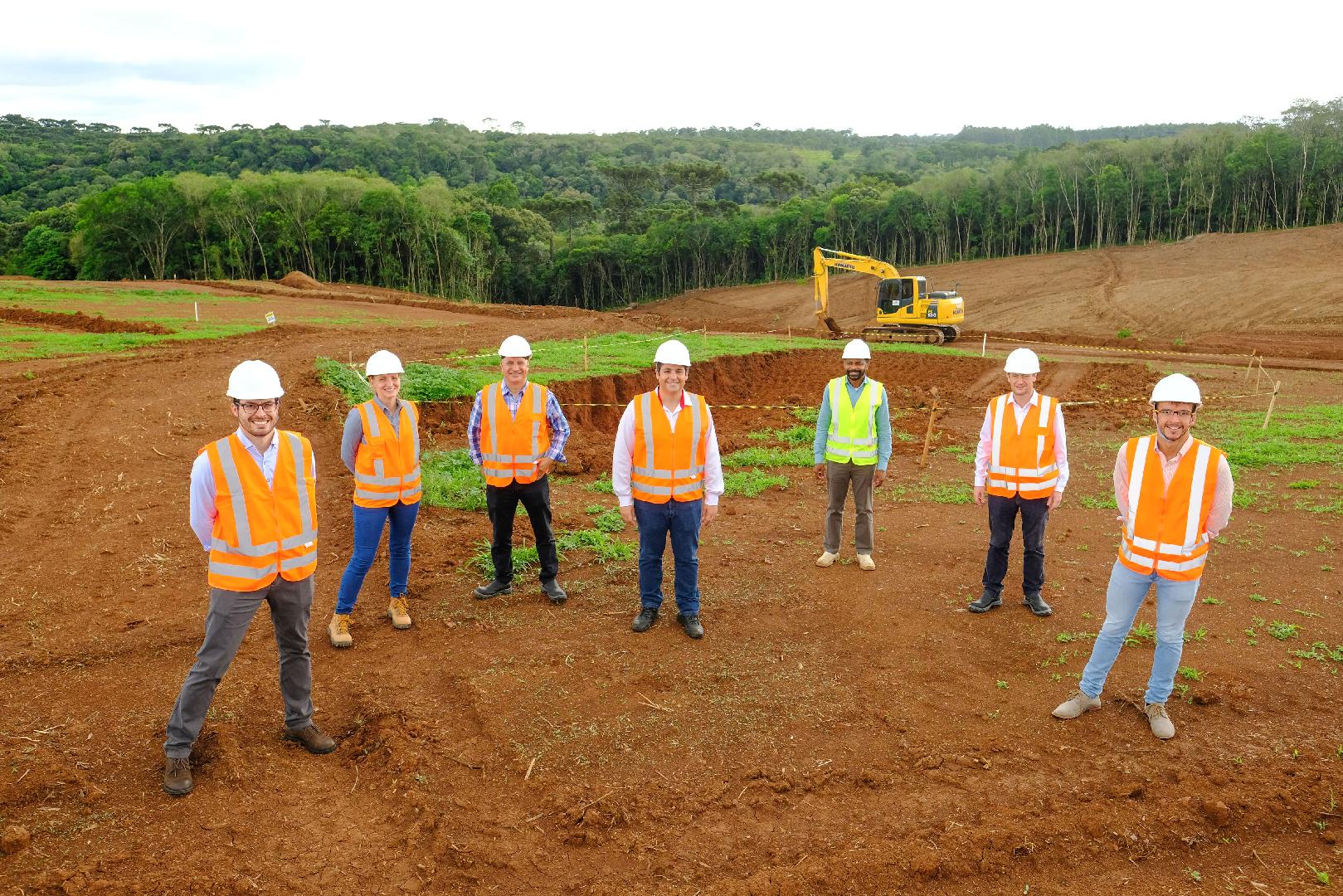 Market Information
Market Information
2+ MIN
18/02/2021
Araucaria: the new Diana Pet Food plant is underway
The multinational Diana Pet Food, leader and pioneer in high-value solutions for the pet market, chose the city of Chapecó in Santa Catarina, for the implementation of its new industrial unit. Currently with 18 plants around the world, the new plant in Chapecó will be the second Brazilian unit and the fifth in Latin America, strengthening Diana Pet Food's presence throughout the region. Diego Maurizio, General Director of the company in Latin America, commented in this regard: 'We chose Brazil and especially Chapecó to carry out one of the most strategic projects of our group, not only at a Latin American level, but also at a global level. From our new industrial unit, we will respond to the needs of our customers around the world '. The election of Chapecó (SC) was made after detailed studies, where the municipality had an important highlight; According to the General Manager of Diana Pet Food Brasil, Fernando Putrino, 'the choice of Chapecó was made judiciously among more than 400 municipalities studied. From the first analyzes, the city presented a differentiated structural capacity, of people and work, points that caught the attention of the evaluators. You can see how the city advances, standing out in the economic and social sphere '. The project The new Chapecó plant will be the largest palatant plant in Latin America. It will produce liquid and powder products for domestic sales and exports. The structure will have an area of more than 10,000 m² and will have modern equipment and high production capacity, as well as laboratories and a structure to optimize logistics and storage. Designed under the 4.0 model of the industry, with full automation and high operational efficiency, its construction began at the end of last year and to this day it continues to advance as planned. Araucaria is part of a global investment plan to continue the local development of Diana Pet Food and is fully in line with the company's motto "The closer the better", which aims to produce closer of customers and ensure a consistent offer. The same plan includes the plant in Colombia, which is also the first 'green' plant for Diana Pet Food and China. At the end of January, Jean Colomb, Global Director of Operations, Walter Rivarola, Regional Manager of Operations and Fernando Putrino, General Manager of Diana Pet Food Brazil were in Chapecó visiting the beginning of the works and the movement of soils. From left to right: Gustavo Gumiero, Cristine Carraro, Walter Rivarola, Fernando Putrino, Armando Graças, Jean Colomb e Silvio Delgado. Source: Diana Pet Food
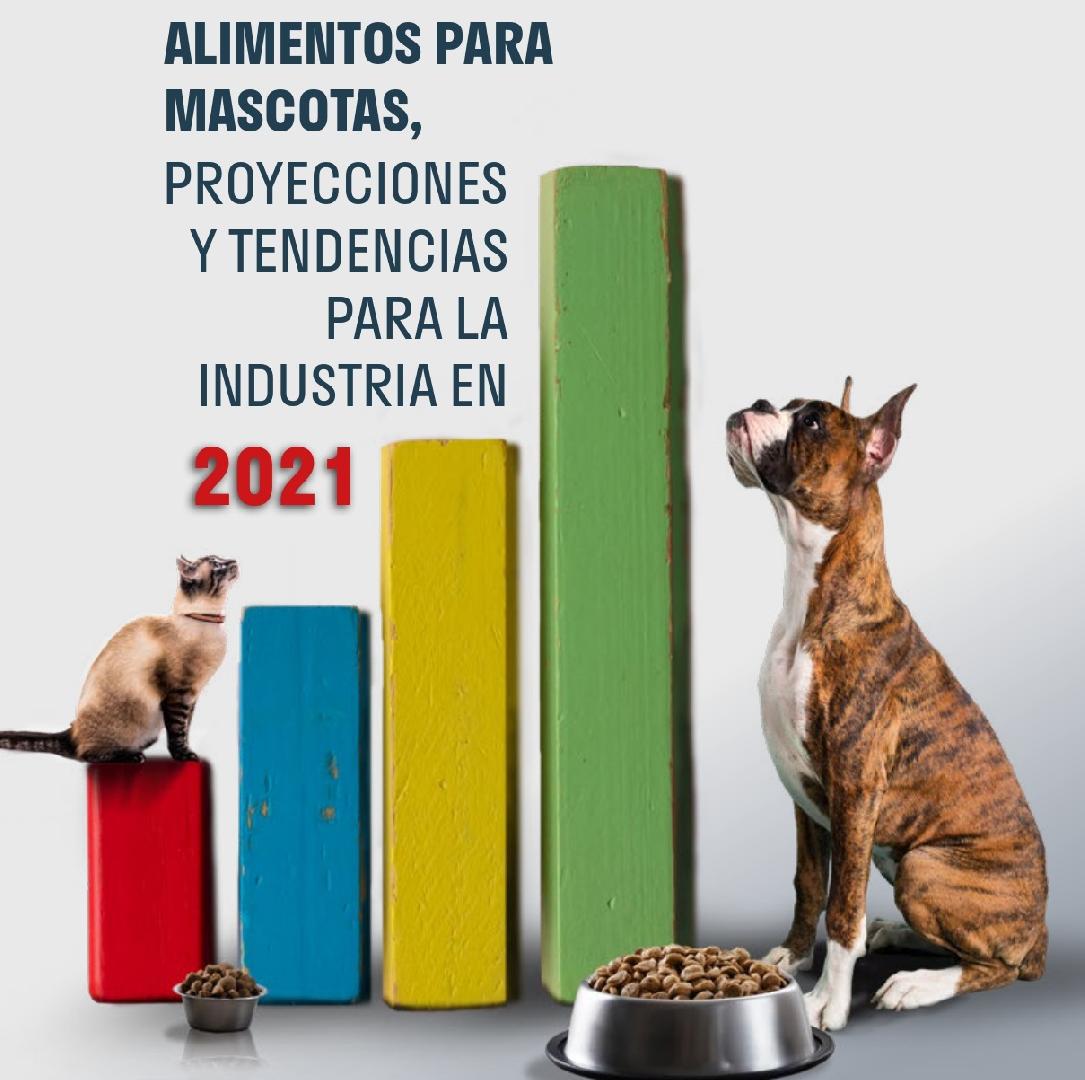 Market Information
Market Information
5+ MIN
16/02/2021
Por María Candelaria Carbajo
Pet Food, Projections and Trends for the Industry in 2021
The coronavirus has impacted all possible areas and industries. To a greater or lesser extent, for better or for worse, all sectors of the global market have been affected, and this is an undeniable fact. In this article we tell you what the projections are for 2021, the first year post-coronavirus, and how the pandemic has, finally, changed what is expected and required for the pet food industry. The size of the Pet Industry Due to the increasing trend of people to adopt / buy pets, the industry has seen tremendous growth in recent years. The surprising thing is that, even despite crises and recessions, the expansion does not stop, and this is mainly due to: • The growing multigenerational appeal of pets. • Appreciation of pets as members of the family. • Greater awareness of the importance of animal welfare and health. • The digital celebration of pets. However, all the statistics, estimates and projections that had been made in previous years will have to be readjusted due to the exceptional situation we are experiencing this year: a streaming pandemic. In the United States, for example, 10% of cat owners and 9% of dog owners adopted a pet due to confinement and the situation caused by COVID-19; 10% of all of them adopted or bought a pet in the last three months. Within the global pet care industry, the food and snack industry in particular is expected to see the largest segment earnings due to the growing demand for premium, natural and organic products. The context in Latin America The fact is imminent: pets are destroying all kinds of judgment and stereotype, and every day hundreds of animals are adopted internationally. It seems that, finally, the taste for pets (cats and dogs at the top) crosses generations, ideology and fashions. Pets are here to stay Let's talk about Latin America: In 2017 there were 670 million pets worldwide, while by 2022 it is estimated that there will be 730 million, which implies a growth of 9% (60 million). For its part, of this growth, it is estimated that 45% will happen in Latin America. It is expected that, in this region of the world, the number of cats will increase by 28% (47 million) and by 72% (115 million) that of dogs, respectively. Argentina and Mexico are the places in the world with the highest density of pets: more than 80% of households have at least one dog or one cat. The largest number of pet owners are women between the ages of 18 and 29. The main markets in the region are Mexico and Brazil. The latter, a large producer of dry food worldwide, will receive a great boost due to both the increase in pets at the national level and the increase in demand for exports. Projections for 2021 • In 2018, the global pet food industry was valued at 83.02 billion dollars; Currently, after all the changes that occurred in 2020, the industry is expected to see a compound annual growth rate of 4.5% by 2025. So by 2025, the industry is expected to reach $ 90.4 billion. • Packaged Facts states that a growth path and sales increase is expected by 5.5% in 2021 and 2022, followed by 5% in 2023 and 2024. • Packaged Facts also projects that the food and treat market will increase its offerings for cats especially, since historically more attention has been given, in this regard, to dog snacks. Cat owners are increasingly demanding a wider variety of products, with specific, more natural formulas and supplements, among other things. What will consumers value? • Quality: Premium quality and natural pet products will continue to drive growth in the industry as owners increasingly take an interest in the well-being and thoughtful care of their animals. • Communication: It will be essential to pay special attention to the way in which we communicate with potential buyers. The competition is getting bigger, so the more specific and honest the brands are, the more loyal customers they will have. A packaging that informs and advises, transparent labels and digital platforms that provide valuable information, among others, are key factors when it comes to differentiating ourselves in the market. According to a survey by Mondi Dow Premium: "77% of those surveyed consider it very important that the packaging contains clear nutritional information." • More cereals: After the research carried out on dilated cardiomyopathy (to the article that deals with this topic) and the possible causal factors, cereals take on a new and interesting participation in pet food, so that alternative formulas with material raw such as quinoa, millet, chia and buckwheat. • Electronic commerce: Consumers have had to turn to online shopping due to the pandemic. A large part will go back to physical store purchases; However, a large percentage will remain in electronic commerce and online stores, due to the convenience they provide: you do not have to carry heavy bags to the car or door, you do not have to depend on going to buy with Someone to help bring the bag of food which, while cheaper, is also more cumbersome to transport. Online pet food delivery offers not only convenience, but also a different experience: brands can profit by sending packaging with pet names, personalized gifts after a certain amount of purchases, etc., and thus maximize the user experience. • Sustainability: Yes, we will have to make friends with this word, because from now on it will be a trend, and thank goodness! As a result of growing environmental concerns, consumers will value sustainability or environmental impact throughout the production and supply process of the food of their choice. From the marketing teams, it will be essential to take into account communicating the ingredients, the sustainability and recycling actions adopted, the way to reuse and recycle the packaging in which the food comes, among others. Research carried out by Mondi Dow Premium found that: 'Seven out of 10 environmentally conscious pet owners prefer brands that reflect their beliefs. Likewise, 1 in 3 owners affirm that they would switch to a brand that offers a more sustainable packaging'. In conclusion The popularity of pets has and will undoubtedly have a positive impact on the market and will contribute to its growth in a significant way. The growing trend of humanization and growing concerns for the health and well-being of pets are causing Latin America to gain more and more participation in the international Pet Food market. How will you prepare to take advantage of the trends that are coming for 2021? Let us know! Source: All Pet Food
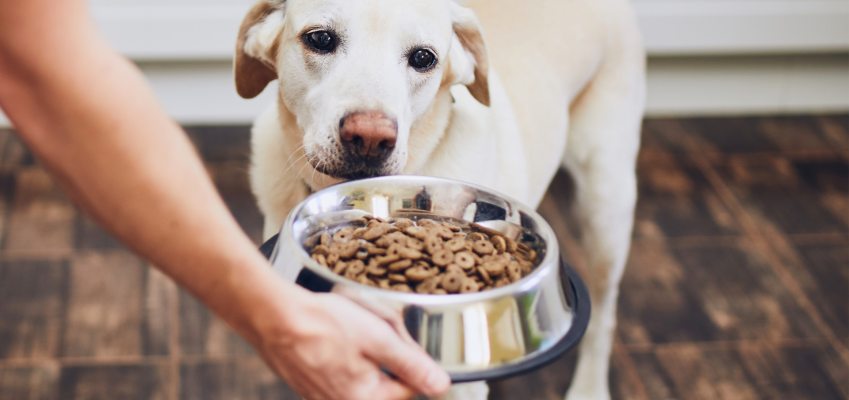 Ingredients
Ingredients
2+ MIN
12/02/2021
What is the difference between Pet Food?
Ready-made Pet Food is divided into 4 categories: economy, premium, super-premium, and holistic. How do they differ, in addition to the price? The main difference is in what raw materials are used in the production of feed, as well as the percentage of useful substances. Economy class: Inexpensive raw materials are used in the production, so this feed is cheaper than others. The basis is cereals. Animal protein in such products is 'flour of animal origin', as well as meat offal. In economy-class feeds, vitamins and minerals are presented in smaller amounts than in premium feeds. Antioxidants, preservatives, and flavorings are used. The nutritional value of such feeds is lower than that of other categories. Premium-class: The composition of these feeds already includes meat – its content can reach an indicator of 25%. Supplement the protein component with offal. The source of carbohydrates is usually corn or wheat. Vitamins and minerals in these feeds are more widely represented. The nutritional value and digestibility are much better than in the economy class, and the price is not as high as in the super-preimum and holistic categories. Super-premium class: The meat component in such feeds is represented directly by meat of the first category, as well as by-products in the form of liver, tongue, kidneys, and heart. The minimum meat content is 25% or higher. Cereals are hypoallergenic: rice and oats, sometimes barley. Also, carbohydrates can be presented in the form of potatoes. Flavor enhancers in such feeds are not used, and the vitamin and mineral palette is impressive. Holistic: This category of feed is at the highest level. The price is also higher than other products. Produce holistic feed from natural protein – meat and fish, the content of which can reach 90%. Most feeds in this class are grain – free. Vegetable component – vegetables, fruits, herbs, berries. There are no colorants, preservatives, or other food additives in these feeds. Many animals initially eat them with reluctance: due to the lack of flavorings, the food does not seem so delicious. But it is recommended for Pets suffering from food allergies, skin and hair problems, and digestive disorders. Source: Aller Pet Food
 Extrusion
Extrusion
1+ MIN
12/02/2021
Ferraz launches its news Twin-Screw Extruder: Model E-150D
Before with a line of twin screw extruders with capacities ranging between 400 and 8,000 kg/h, Ferraz now is launching its extruder with the highest production capacity - up to 10,000 kg/h: the Ferraz E-150D. The E-150D twin screw extruder has more advanced technology than single screw extruders, with features such as: Greater flexibility in the configuration of different thread profiles and greater ease in changing and replacing them; greater versatility. .Possibility of working with diets that have higher levels of ether extract, as it offers greater pressure and expansion of the product. Works very well with the addition of fresh meat. Easier cannon cleaning - smooth, non-fluted or helical liners. Variety of products: beef, bi-colored, nuggets, among others. If your focus is on premium, high premium and super premium rations, we have a right twin screw extruder for your production, talk to us! [email protected]
 Market Information
Market Information
10+ MIN
09/02/2021
COVID-19 influence on the pet food business in Latin America
Coronavirus, COVID-19, Sars-CoV-2... there are many names for this virus that arrived at the end of 2019. It completely changed the world as we know it forcing all humans to isolate themselves and, above all, to adapt. When the media mentions something related to coronavirus, immediately the general feeling is of despair, tragedy, fear and uncertainty due to the strong economic recession and health impact caused from this virus in multiple countries. It is completely understandable why the general feeling is one of panic and anxiety, but were all industries affected equally? The answer might surprise you. In the midst of the global health and economic catastrophe, there was an industry in which both producers and consumers knew how to adapt and took advantage of the situation. Do you want to know what industry it is? Continue reading. Did the pandemic affect all industries equally? Without a doubt, the pandemic we are currently experiencing did not go unnoticed. All industries were affected in one way or another. The health pandemic that we are going through has had an economic impact, bringing with it the worst economic recession since 1930 and The IMF's latest World Economic Outlook suggests that the pandemic will cost the world $28 trillion dollars. Industries such as technology, in which shipments and sales of televisions fell by -4.5%, video games by -10.1%, smartphones by -10.4%, smart speakers by -12.1% and smart watches up to -16%, are examples of how much the pandemic has affected the world economy. Other industries heavily hit by COVID-19 are the food industry, retail businesses, hotels and travel agencies with an economic and job loss of - 7% according to Mon Empresarial. So, the pandemic has impacted all industries worldwide, that is a fact, but has it all been negatively affected? What about the industries that have grown the most in recent years, such as the pet food industry? There is no doubt that businesses related to the pet food industry have grown disproportionately in recent years and Latin America has become the region with the largest number of pets in the world. This increase in pets in Latin America is largely due to humanization trends, especially in younger generations such as Millennials, a generation born between 1981 and 1993. It's about 30% of the Latin American population and they prefer to have a cat or a dog over a child (Source: Forbes.com .mx) Actually dogs and cats are a part of their family and they invest large amounts of money in their health and nutrition. This growth led to the pet food industry increasing its presence on the digital stage. It is estimated that from 2020 to 2025 the pet food industry will grow annually by 4.5% (CAGR 2020-2025), thus becoming one of the fastest growing industries in the market. (Source: Statista). According to Statista, the pet food market will reach a value of 97.111 million dollars during 2020. Amazing, right? So, how is it possible that the industry has not only managed to survive the pandemic, but is growing day by day despite the difficult situation we are going through? To answer this question, it is first important to know the trends, sales before the pandemic, and how it started to grow. How was the pet food market doing before the pandemic Imagine it is Christmas 2018, your family has spent the last few months talking about how good it would be to adopt a pet so that the children learn about responsibilities, take long morning walks and add a furry member to the family. On December 25, you decide to surprise your family with a 2-month-old Siberian Husky, the children can't believe it, they immediately give him a name and ask you to go to the nearest pet store to buy him toys, food and to take his first medical check up. As the months go by, visits to the pet store to buy special kibbles for this breed, prizes and toys, become a routine: every month you get in the car, drive to a pet store, buy their food, a couple of prizes and a new toy. At the end of 2019, the imminent news reaches you: a new virus has been discovered in Asia, its evolution and transmission are unknown, however, the authorities ask to stay informed and be attentive to any indication. Come 2020, the official orders are to keep social distancing, work from home and only go out to make necessary purchases, but what about pets? What will happen to the monthly routine of driving to the pet store to get their food, treats and toys? The answer is in technology, adaptation and E-Commerce. So, the thousands of families that have at least one pet in their home, were forced to adapt and make their purchases on the internet in order to continue treating their dogs and cats as another member of the family. On the other hand, how did pet food producers adapt so as not to be affected by this change in consumption habits? Trends don't lie: Pet food producers and distributors noticed the migration of online shopping and started investing in their e-commerce. Surely you have realized the economic crisis that the pandemic has caused, which has taken millions of jobs around the world and has considerably affected most industries, therefore, whether you have a pet at home, or are a producer or distributor of pet food, it is important that you are aware of the consequences that all this has brought for the pet market in Latin America. To understand how the pet food industry was affected by COVID-19, it is first necessary to understand its exponential growth months before the pandemic came to stay. In almost all continents, there was a huge boom in pet food. For example: In European households 38%, that is, about 85 million households, are estimated to have pets (66 million cats and 60 million dogs) (APPA) In the United States, there are almost as many pets as there are people with 305 million of them! (APPA) Asia is the continent where they have the fewest pets per household with less than 11 million cats and 26.8 million dogs in China, despite the fact that the country has almost five times more people than the U.S. Japan has an impressive number, considering how small the country is -- 13.1 million dogs and 9.8 million cats (The business journal in numbers). Latin America, as mentioned before, is the region where the largest number of pets per household is concentrated, in which about 80% have at least one dog or cat at home (In Brazil there are 74.3 million dogs and cats, in Mexico there are 28.2 million, in Argentina 13 million, Colombia 5.7, Peru 4.77 and Chile with 4.5 million dogs and cats.) (Insurance Information Institute, Statista 2020). Let's look at some interesting data to understand how the industry was not affected by the coronavirus: At the end of 2019, Latin America was experiencing a great growth in the pet food production industry, positioning itself as the second fastest growing region in the world after the United States. Latin America was producing 6 million tons at a rate growth of 7%, compared to the previous year (Global Food Survey: Alltech). Although the largest market is in Brazil and Mexico, the most prominent countries were Ecuador and Argentina, where they produced 180,000 tons and 710,000 tons respectively (Alltech). All of this is attributed to a growth in the purchasing power of the population. That is to say that more and more people are moving up to the middle class. Other factors that influence are the growing number of pet ownership, based on the millennial trend of having a pet instead of kids, the global trend of humanization and new concerns for the health of these pets. Hand in hand with this trend, the pet food industry had a significant increase of 28% only in Mexico, this is due to the fact that in that country, about 70% of households have a pet, in which 41.5% they are dogs and 16.5% are cats. (Euromonitor International). According to statista, in 2017, in Latin America, around 5.9 million tons of balanced pet food were produced, with Brazil and Mexico being the main leaders in both sales and market penetration, closely followed by Argentina, Chile, Ecuador, Colombia and Uruguay. This high rate of consumption and sales of pet food, is largely due to the trend of humanization, in which the population, especially young or middle age adults between 20 and 35 years old, seek more and more well-being for their pets, whom they consider to be members of their family. It is well known that the pet food industry has an excellent growth projection in the coming years. Some of the factors, as we have seen throughout the article, are the generational change in which Millennials treat pets as a member of their family, the humanization of animals, mirror diets and others have favored the industry. Not only was it not heavily affected during the pandemic, but its sales and market value have increased! Seeing the glass half full With a sustained growth of 6% per year (source: Euromonitor) and a projection to increase the market value from $1.9 billion to $2 billion, it seems that the pandemic could not come at a worse time, however, far from what it could. Apparently, the coronavirus has benefited the pet food industry. It is quite possible that older generations would have preferred to live in austerity and feed their pets homemade leftovers before investing in balanced pet food. However, as we have mentioned, 30% of the Latin American population are young people born between 1981 and 1993 and have a strong preference for animals and their well-being, a factor that undoubtedly favored the industry. Another reason why the pandemic did not affect sales of pet food, but instead, favored its annual increase, was online sales. According to IBISworld, e-commerce reached $211.5 billion in the United States, of which 10%, that is, 10 billion dollars, correspond to sales of food and other products for pets. How did companies adapt Companies in the sector have had to reinvent themselves and adapt to the pandemic. Fortunately they have done it so quick and successfully, either through their own online stores or recognized e-commerce sites such as MercadoLibre or Amazon that have managed to increase sales of pet food and other small species (The sale of cat food through the internet increased by 401% and the sale of accessories increased by 175%, according to a research carried out by "Criterio", agency specialized in electronic commerce). These statistics tell us that one thing is certain: Latin America is about to make a leap to digital shopping as it's first option to buy food for their pets. The pet food industry in Latin America has a bright and promising future, all thanks to the growing trend to make pets a member of the family and e-commerce. Their nutrition and well-being are already indispensable for pet owners, even becoming part of the basic food basket for families. Conclusions So what should small and medium businesses do within the pet food industry? The answer is to adapt to change, closely follow trends, and not give in to the pandemic, which, while it appears to soon be under control, it may still catch us off guard. Businesses within the industry should view e-commerce not as a temporary option, but as a business alternative that is here to stay. Younger generations have shown interest in the well-being of their pets, that is, their family members, and they will not hesitate to invest more and more money in getting the super premium grain-free food and even more if it can be delivered to their front doors. If you are reading this article and you already have online sales, consider including photos of your products being sanitized and following all preventive processes to avoid the spread of the virus and reassure the consumer's peace of mind. If you still don't have online sales or presence in Market Places, don't wait any longer. Fortunately, this virus will not infect your devices. And, what can you do as a consumer? Businesses of any kind, today more than ever, require the support of consumers to continue fighting the economic recession that is expected due to the pandemic. Actually your best four-legged friend also needs you to survive. Stay safe, keep your pets safe and help the pet food industry continue to grow by making use of technology. Give this tool a chance, the one that has allowed the economy not to completely collapse: e-commerce. 2021 will surely bring us a more encouraging outlook, with the vaccine and the imminent return to normality. Meanwhile, adaptation to change, empathy and the implementation of technology have become part of our lives. Without a doubt, changes are difficult and this has been one of the most abrupt we have experienced but it is up to us to learn from the pet food industry and take a lesson: the world is for those who are capable of change, adapt and make quick decisions. Post Without a doubt, changes are difficult and this has been one of the most abrupt we have experienced but it is up to us to learn from the pet food industry and take a lesson: the world is for those who are capable of change, adapt and make quick decisions. If you are reading this article and you already have online sales, consider including photos of your products being sanitized and following all preventive processes to avoid the spread of the virus and reassure the consumer's peace of mind. If you still don't have online sales or presence in Market Places, don't wait any longer. Fortunately, this virus will not infect your devices. The pandemic is not a reason to stop. Adapting to change is here to stay. Author: Diana Mercado Cisneros Source: Zoo Inc.
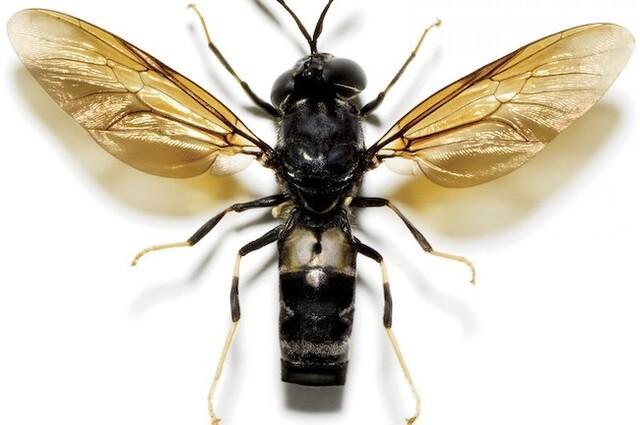 Ingredients
Ingredients
2+ MIN
07/02/2021
Turning fly larvae into Pet Food
B.C. company turning fly larvae into pet food gets $6M in federal funds. British Columbia company that feeds food waste to insects to produce pet food has received $6 million from the federal government for a new plant just north of Calgary. Enterra Feed Corp. of Maple Ridge last year opened a 17,500-square-metre production facility, about the size of three football fields. It's been producing insect-based feed ingredients out of the Rocky View plant for the pet food, poultry and wild bird markets in North America and Europe. The insects are black soldier flies and the plant is able to recycle 130 tonnes of food waste per day and turn it into 10 tonnes of high-protein feed along with 10,000 to 15,000 tonnes of organic fertilizer. "It's really quite disheartening how much of that food doesn't make it to the plate," said Enterra president Keith Driver. "It's really surprising how much of that product is out there and available." The fly larvae are fed a mixture of food waste and agricultural byproducts — primarily fruits and vegetables that come from food processors. The insects can then be fed to poultry and fish as well as to cats, dogs and reptiles. A trial is underway to see if it will work in the pork sector as well. "Black soldier flies are prolific breeders. They grow very quickly — one million per cent of their body weight in just three weeks," said Driver. "They're very docile to manage." The federal Agriculture Department says more than half — roughly 35.5 million tonnes — of Canada's food supply is lost or wasted annually and $49.5 billion of that waste is avoidable. In addition, eight per cent of all greenhouse gases worldwide are the result of food waste. "You have broken new ground as the first company in Canada to receive regulatory approval to produce animal feed ingredients using flies," said federal Agriculture Minister Marie-Claude Bibeau. "Seeing it on such a scale, I think it's interesting. I'm very open to all of these innovations that can feed animals but also feed the world." Driver said Enterra plans to eventually open another plant in either Ontario or Quebec, but progress has been slowed due to the COVID-19 pandemic. Source: Castanet
 Market Information
Market Information
3+ MIN
28/01/2021
Pets: investment or opportunity?
Throughout 2020, in my search for defensive growth sectors to invest in, I suddenly came across a new megatrend that amused me at first. But as I analyzed it, I realized that it made a lot of sense. It's about investing in everything that surrounds pets and animal welfare. For many people, their pets just another member of the family. It is no wonder that 65% of cat and dog owners in Germany buy their pets a Christmas present. Increasing digitization and urbanization make people try to connect with nature. Demographic factors (millennials, singles, childless couples, seniors, etc.) clearly favor the demand for companion animals. There are more and more dog-friendly restaurants and offices. Emerging markets are strongly joining this trend with rising incomes (in these countries, having a pet is a status symbol). The world market for products and services around pets is growing at a rate of 5% per year. This is a crisis resistant market: if a pet gets sick, it will be taken care of as best as possible whatever the economic climate. In the middle of the pandemic, we have been able to verify it. In the universe of transferrable investment funds, there is practically only the option of Allianz Pet and Animal Wellbeing (they have detected about 60 companies with sufficient purity, that is, that at least 50% of their sales are related to the subject) and It is getting very attractive results, so I decided to take advantage of my friend Jesús Ruiz to obtain additional graphic material. In this first TruDog infographic, we can see the amount of expenses associated with animal health that owning a dog involves. This makes it worth investing in firms such as IDEXX Laboratories (a world leader in the field of pet diagnostics): Here we see that, over time, the dogs have gone from the house in the garden to sleeping inside the house and from there directly to bed. This has been accompanied by an increase in the therapeutic areas that are used: In this other infographic, Allianz breaks down the cost of keeping a Labrador for their entire life. Almost half goes to food and there are interesting companies, such as Freshpet, specializing in healthy pet food: This Bloomberg graph quantifies the cost of an average dog during his life and compares it with that of other pets such as cats, rabbits or hamsters: This other graph shows us how the prices of the most demanded breeds have skyrocketed in the middle of the pandemic: In 2018, Americans spent $ 72 billion on their pets, which exceeds the combined GDP of the 39 smallest countries in the world in economic terms. In addition, in the first world power, there are 90 million dogs: more than a quarter of the national population. Let's move on to emerging economies and specifically their first representative: China. In the Asian giant, most of the owners of pets are young and women. And, despite what we might think from their culinary habits, there are more dogs than cats. Let's look at this graphic from the CGTN: If anywhere in the world they humanize pets more than anywhere else, it is in Asia. Here we see that, for more than half of the Chinese, pets are like children: I already said that, in my opinion, in 2021 and 2022, you have to invest in growth sectors structurally and in value on time. If you wanted ideas of defensive growth sectors, pets might be one of them. Happy weekend and today I close with this quote from Mark Twain: "If you pick up a hungry dog and make him prosperous, he will not bite you. That is the main difference between a dog and a man." Autor: Gustavo Rivero By: The Spanish
 Market Information
Market Information
3+ MIN
27/01/2021
What to expect from the Brazilian Pet Food Market in 2021?
A new year is beginning and there is great excitement in the pet food sector. According to data projected by the Pet Brazil Institute, the sector of products and services for pets should grow to a little more than 6% in 2021; which excites us even more, since according to ABINPET data in 2020, the turnover of this market was R $ 22.3 billion, exceeding the mark of previous years, even in a situation of pandemic and economic recession that we are living. There are several factors that drive the figures in this market, but as we are active and passionate about the pet food sector, we can highlight two points that draw our attention to the boom in the sector: the increase in the number of dogs and cats domiciled, which causes the consumption of pet food to increase in absolute values; and the change of status that they have in the Brazilian household for relatives, so that they receive products that go beyond their basic needs, but products that show the affection of their tutors. Given this scenario, there is great interest on the part of investors to enter this sector, and we receive demand for technical consulting services to serve this diverse audience, ranging from large consolidated companies that already operate in the sector, large companies already stabilized in other businesses and wanting to enter the pet food sector, small business owners and even individuals who want to sell some snacks on a small scale. By 2021 we foresee an even greater diversity of products for feeding dogs and cats available in the market, and this will be driven by the recent ordinance 196, of January 8, 2021 of the Ministry of Agriculture, Livestock and Supply (MAPA) that exempts from registration of establishment with MAPA kitchens that produce natural frozen or dehydrated pet food. We believe that with this, the number of people who make homemade food will grow exponentially, so investing in consultancies for the development of these foods will be a way for companies to demonstrate their credibility and commitment to putting safe and balanced products on the market exclusively destined for to dog and cat food. We also believe in the individualization of pet food, more and more the trend is the customization of products according to the specific needs of each animal. Until now, we understand that professionals and companies that work with dog and cat nutrition need more than ever to be up-to-date and prepared to develop products, learn about manufacturing processes and / or perform services that take into account the needs of this diverse public. and that you have great clarity and transparency in your communication with the client. Clarifying to the tutor what is the differential of the products that you can offer your pet is something fundamental for this moment in which we live, so that he gains autonomy to make better food choices for his pets, not only based on trends and fashions, but understanding that be safe and healthy for your pet. Source: * Erika Stasieniuk is a Zootechnician and Doctor in Nutrition and Food for Dogs and Cats from UFMG. She is a founding partner of SFA Consultoria, which aims to help food and ingredient companies for dogs and cats develop their products and manufacture safe and quality food. ** Ludmila Barbi is a Veterinarian and Master in Nutrition and Food for Dogs and Cats from the UFMG. She is a founding partner of Bem Nutrir, which provides clinical nutritional care, formulating complete and personalized 'natural' diets.
 Market Information
Market Information
2+ MIN
27/01/2021
AFIA Honors Pet Food Industry Professionals
ARLINGTON, Va. – Jan. 26, 2021 – The American Feed Industry Association (AFIA) is pleased to announce Galen Rokey, of Wenger Manufacturing, Inc., and Michael Panasevich, of Summit Ridge Farms, as the recipients of the 2021 Friend of Pet Food Award. Scott Baker, marketing manager at SEM Minerals, LP, presented the awards today during the AFIA Pet Food Conference, happening virtually in conjunction with the International Production & Processing Expo this week. The Friend of Pet Food Award recognizes individuals who have made significant contributions to support the growth of the pet food industry. Galen Rokey of Wenger Manufacturing, Inc. received the Friend of Pet Food Award at the 2021 AFIA Pet Food Conference. 'Rokey and Panasevich are both truly friends of pet food and we are thrilled to recognize them today,' said Louise Calderwood, AFIA's director of regulatory affairs, following the announcement of the awards. 'Rokey's creative force has helped foster pet food's transformation into an industry with high nutrition, quality and sanitary expectations. The global pet food market would simply not contain the current value and scope of choices without Rokey's dedicated, humble work. His career has been full of pet food advancements for which we are all grateful.' 'Combining a vast knowledge of nutritional requirements, with an expert understanding of ingredients and a proficiency in cooking and forming via the extrusion process, Rokey has advanced pet food concepts in the research laboratory, then educated the industry on the lecture circuit, leading to the industry's feed-to-food evolution,' said Baker. Rokey is the director of process technology in the companion animal division at Wenger Manufacturing. Rokey's latest breakthrough is a cutting-edge thermal screw extrusion system that allows pet food companies to cook formulas containing fresh meat levels more than twice the amount previously possible. Michael Panasevich of Summit Ridge Farms received the Friend of Pet Food Award at the 2021 AFIA Pet Food Conference. 'Panasevich's passion and life's work has been to provide the most precise, accurate and scientific data that empowers the industry to develop absolutely the best diets, treats, supplements and products for consumers,' Baker stated. 'He offers truly invaluable experience and knowledge on study design and implementation and has made it a priority to pass that knowledge on to the next generation,' Calderwood continued. Panasevich is the president and founder of Summit Ridge Farms, the world's largest independent research facility completely dedicated to supporting the pet food industry. Summit Ridge Farms focuses on pet food testing, providing the industry with reliable research on all types of testing protocols for dogs and cats. Amid the demands of running a business, Panasevich also participates in industry meetings involving pet food, including the Association of American Feed Control Officials feeding trials subcommittee. by AFIA
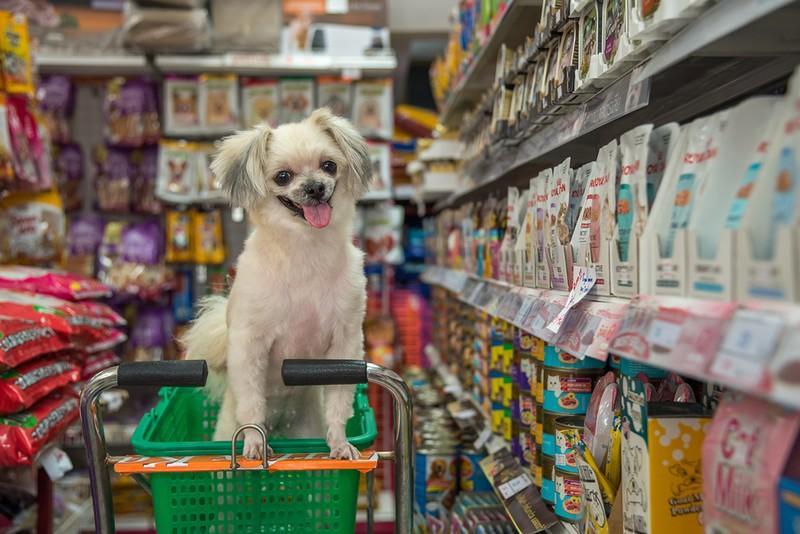 Market Information
Market Information
2+ MIN
26/01/2021
Seek to produce better Pet Food in Mexico
Contributing to the production of innocuous, healthy and safe feed that guarantees better animal health, which has a direct impact on humans, will be one of the challenges of the National Council of Feed Manufacturers and Animal Nutrition, A.C. (CONAFAB). Jorge Martínez Carrillo, new president of this Council, pointed out that this will be one of the main objectives for this 2021. Martínez replaced Luis Lauro González Alanís from Monterrey, after four years of management. In Mexico, there are 581 production plants for pet food, especially dogs and cats, with an annual production of 37,925 tons. This sector directly and indirectly employs about 230 thousand people nationwide. Martínez has more than 20 years of experience in multinational companies throughout Latin America and the United States, mainly in the areas of process engineering, global manufacturing management, demand planning as well as supply and operations management. To achieve better pet food, the president of CONAFAB said that it is essential to have the commitment of the various actors involved in the agri-food sector. "As well as that of our associates, since they are companies that invest in the research of vitamins, minerals and nutrients that help to improve balanced feeds for animal consumption, including those produced in aquaculture farms such as shrimp, tilapia or trout, with in order to guarantee the presence of safe and quality protein on Mexican tables", he said. In addition to the commitment to manufacture feeds that contribute to the production of a quality animal protein, one of the pillars that has gained relevance in recent years in the organization is the Amascota Group, which brings together more than 95 percent of the producers of feed for dogs and cats. Currently, the companies associated with CONAFAB produce balanced animal feed in Mexico, which is a key factor in achieving food safety in the country through one of the industries that in recent years has gained greater relevance. By: El Financiero
 Market Information
Market Information
3+ MIN
25/01/2021
Pet Food Sales Jump On Higher Pet Adoptions During Lockdown
Helped by an increase in pet adoption during the coronavirus-induced lockdown, pet food sales grew 20 percent in 2020, with manufactures now looking to continue the momentum going ahead. Manufacturers like Mars Petcare, which own popular brands Pedigree, Whiskas, IAMS, and Temptations, and Nestle-owned Purina witnessed high double-digit growth last year. The growth came not only from traditional channels like pet food stores but also from e-commerce platforms. Encouraged by the surge in pet adoption, manufacturers are expanding their product portfolio in India and launching new TV commercials, digital campaigns and online-exclusive products. "There has been a rise in pet products as an overall category and an increase in demand for pet food. During the lockdown, many pets were adopted and welcomed home and pet parents started stocking up on products, especially the large bags, treats, cat food, etc," Mars Petcare India General Manager, Ganesh Ramani told PTI. There is an exponential surge in pet adoption as people are spending more time at home and alone. More younger people are opting for adopting pets. Puppy adoption rates have gone up in the range of 50-100 per cent in 2020. The cat market has grown upwards of 40 per cent, he added. On the growth in pet food segment, he said, that the market growth rate in India has accelerated since 2019 from 16-17 percent growth (to) upwards of 20 percent in 2020. 'Reasons that led to this were mainly people spending more time with their pets as they were stuck at home during the lockdown, adopting more pets, feeding stray dogs and cats around the city knowing that they were hungry, donating food to NGOs and many such factors.' As a company, Mars PetCare grew at a significantly higher rate than the market during the lockdown, Ramani added. Nestle's Purina also saw increased consumer traction for pet food segment. "Purina, especially in canine food category with our premium pet food brand Supercoat, witnessed encouraging consumer response. Among trade channels, we witnessed the contribution of e-commerce growing to our total revenue," a spokesperson of Purina Petcare India said. Encouraged by the response, Purina launched its first-ever TV commercial for Purina Supercoat last year. In 2020, about 85 per cent of the domestic pet food market comprised of dog food, while the balance was cat food. According to Ramani, the domestic manufactured pet food market is only around 6 per cent of the Rs 2,500 crore market catering to 2.5 crore pet dogs and 4.5 million cats. This has the potential to grow over 20 times, he said. "We plan to introduce more products to cater to the burgeoning pet segment in India. As a trend, we see more and more pet owners shifting to manufactured pet food as people have come to realise that the nutritional needs for their pets cannot be fulfilled by home-cooked food," Ramani added. Market research firm Euromonitor had earlier forecasted a 68 per cent rise in sale of pet products in India by 2025. Sensing a good potential in the segment, Cosmo Films, a leading solutions provider in packaging, lamination, labelling and synthetic paper segments, had last year announced its foray in the pet care business. By: Bloomberg
 Ingredients
Ingredients
2+ MIN
22/01/2021
Kemin Industries will work with CSS to explore Recycled Groceries for Sustainable Pet Food Ingredients
The global ingredient manufacturer will use CSS Harvest to Harvest ™ technology for its pet food business. Kemin Industries, a global ingredient manufacturer that strives to sustainably transform the quality of life every day for 80 percent of the world with its products and services, is working with CSS to explore the development of pet food ingredients. sustainable, high-quality from recycled groceries. "Pet owners are demanding more and more natural and sustainable solutions for their pets. We are excited to leverage CSS's innovative edible recall and H2H ™ technology with our commitment to providing safe and sustainable pet food ingredients that improve pet nutrition, health and well-being," said Yannick Riou, President of Kemin Nutrisurance. "Our working together is an exciting step in offering our industry new solutions to address the changing needs of pets and their parents, backed by our promise that Kemin is guaranteed." "We are delighted to share with Kemin a commitment to being good stewards of our environment through world-class science and technology," said Dan Morash, CSS founder and CEO. 'Kemin's technical expertise and leadership position in the market will prove invaluable in producing consistent, high-quality products that pet owners can trust. Kemin is the ideal partner to help us achieve this goal. Kemin and CSS will continue to explore solutions to achieve two goals: reduced food waste and innovative new products for pets and pet parents. About Kemin Industries Kemin Industries (www.kemin.com) is a global ingredient manufacturer striving to sustainably transform the quality of life every day for 80 percent of the world with its products and services. The company supplies more than 500 specialty ingredients for human and animal health and nutrition, pet food, aquaculture, nutraceuticals, food technologies, crop technologies, and textile industries. For more than half a century, Kemin has been dedicated to using applied science to address industry challenges and deliver product solutions to customers in more than 120 countries. Kemin provides ingredients to feed a growing population with its commitment to the quality, safety and efficacy of food, feed and health-related products. Established in 1961, Kemin is a privately-owned and family-operated company with more than 2,800 employees and global operations in 90 countries, including manufacturing plants in Belgium, Brazil, China, India, Italy, Russia, San Marino, Singapore, South Africa and U.S. About CSS CSS, the leader in sustainable food recovery technology, is commercializing its innovative Harvest to Harvest ™ (H2H ™) technology to recover organics from supermarkets and other sources to produce proprietary fertilizers and pet food ingredients. CSS conserves the 'cold chain' to recover food before it is wasted and recycles food for beneficial and productive use. CSS technology reduces greenhouse gas emissions, provides nutritious and healthy ingredients for pet food, and improves the sustainability of the global food supply system. By: Kemin Industries
 Manufacturing Process
Manufacturing Process
7+ MIN
21/01/2021
Pet Food Plant Operations Manager’s Evaluation
By the way, I didn't mention the position of Factory Manager or Production Manager; perhaps the correct word would have been "Manager". The scope of assignments varies by company, but these assignments do not deviate from the essentials. 1) But why evaluate an Operations Manager? • The first, but not necessarily the main reason, is that the final results of a factory operation depend on the team that works there. And the team is a reflection of the manager. • FORMAL and periodic evaluations keep the entire team operating as a cohesive unit, focused on the objectives of effective operation, with the best productivity, quality and the lowest cost. • Formal evaluations eliminate subjectivism. When the practice of these evaluations is extended to the other levels of Supervision, the results of a successful professional performance outweigh the possible upsets and sweeps that sometimes unfortunately occur. • Formal and regular evaluations make what I call 'Orphan Syndrome' disappear. I explain: It is impressive to see that a large number of managers suffer from this syndrome, simply because they do not receive adequate feedback on how their performance is going. I'm not talking about possible praise for actions that have worked. I have never seen a Manager or Supervisor who can do without a formal, periodic, sincere and constructive evaluation of how her work is generating results. This feeling is part of human psychology. It is more common that they receive only two types of Feed-Back: a) "The cost of the operation is high." b) "We received a serious complaint about our product" It may happen that the cost is within target and adequate for the intended operating standard, but the sales volume and pricing policy are not ... in other words, they may be selling little and poorly. • Formal and periodic evaluations serve as the basis for granting bonuses in a certain periodicity regime. and they also serve to replace employees strictly on the basis of their performance, without subjectivism. 2) HOW TO EVALUATE? • You may have noticed that I repeated the phrase 'FORMAL AND PERIODIC EVALUATION' several times. It was not an accident. Formal and periodic evaluations should be part of the policy and consequently of the company's procedures, and my best suggestion is that they be done QUARTERLY, rain or shine. If this is not the case, the "Orphan Syndrome" instead of improving or disappearing it gets much worse. • When I say 'Formal', I mean the fact that it must be in writing, in an appropriate company form and strictly comply with the objectives that were established in agreement with the employee. I emphasize "common ground" because if goals, instead of being negotiated at the beginning of each fiscal year, are pushed "down the throat" by management, the process will not be successful. On the contrary, it will generate resistance, boycotts and disappointments! Which is the exact opposite of what is intended! So, dear Manager, if this practice does not yet exist in your company, collaborate and make this EVALUATION process a reality. • The goals should be progressively "CHALLENGING", but not unattainable, if they are not, they will generate serious frustration. 3) WHAT TO EVALUATE? • The general rule of thumb is L.I.M.O - Less input, Maximum output - The minimum of inputs or expenses, with the maximum of good / suitable products. A) COSTS PER TON EFFECTIVELY PRODUCED Sum of personnel costs, energy, maintenance, factory overhead, etc. / tons produced. A question to think about: Do you, as a manager, know how much "Mill Hammers per ton produced" cost? Or at the end of the quarter, would you know the value of the spare parts used in the extruder, divided by the tonnage produced? Or do you, as a manager, just control "the totals"? The truth is that if the administrator does not effectively control the parcels that make the "TOTAL", then this Total simply "Occurs", without control. And who does not control, does not manage. B) PRODUCTIVITY TN / TIME PER EXTRUDER AND TOTAL (total tons produced in the month - reprocesses generated) divided by the number of hours of the machine hour meter. If you don't have controls (for example, production order) that show you the end of a production, with the volume generated and even the volume of reprocesses, then you should have them. For those interested, I can make available a model of the PRODUCTION ORDER (email at the end of this article) C) PERCENTAGE OF AVAILABLE TIME OF MACHINERY It is the sum of the hours actually worked by an extruder divided by the total hours available per month. Ex: (one machine), 23 days of 9 hours, total time available = 207 hours - And if you have overtime, they should be counted. Total hours recorded in the hour meter (extruder main motor) = 144.9 hours % of time use = 144.9 / 207 = 70% As for your question: is it good or bad? - It will depend on your product portfolio and the amount of exchanges you need to make. Remember that if you work "religiously" with a weekly schedule, (demand!) Use a regulating stock wisely and minimize the number of trades in the day, this percentage can be improved. Therefore, longer runs will also improve productivity and reduce rework. On the other hand, if you accept that there is no weekly schedule, try to make many products every day and attend to everything that comes out of the program at any cost, remember that the Market will not want to pay this cost. The Production Order that I mentioned in the previous item contemplates the control of lost time, including by type: Scheduled and unscheduled, and by sector. D) NUMBER OF HOURS STOPPED FOR EMERGENCY MAINTENANCE (sum of all sectors) If you haven't implemented a FORMAL Lubrication and Preventive Maintenance Equipment System, then you should have. For those who are interested, I can send you an example of a simple table that allows you to implement a preventive maintenance system. (email at the end of this article). E) SUBJECT TO ZERO ACCIDENTS WITH OR WITHOUT LOST TIME, - it does not matter if the employee was removed or not. F) NUMBER OF CLIENT COMPLAINTS ABOUT THE QUALITY OF THE PRODUCT. If the company does not have a SAC in place, I suggest that it be implemented. In the meantime, I suggest that Customer complaints submitted by the Sales Team be STRICTLY FORMAL (i.e. in writing) - For those interested, I can provide a form called "FIELD CLAIM". All must have already felt verbal complaints such as "It is moldy", "It is deformed", "It is contaminated with another product", "It has insects", or "It is different from the last time" and as a rule they are complaints without information about the batch, customer and without samples. This practice must be corrected. It is not possible to return to the Client and eliminate the cause of the possible error without formalizing the claim, and it is the Commercial Team that has to put this in writing and not the CLIENT. G) PERCENTAGE OF COMPLIANCE WITH THE TRAINING AND TRAINING PROGRAM FOR OPERATORS AND SUPERVISORS I am not referring to the Mandatory Training Program by law (Ex ~ CIPA) - it must be fully complied with, under penalty of fines. I'm talking about the Training and Capacity Building program that you may have planned before the start of the fiscal year. Basically you must list all your employees, in all areas, and determine if each one is simply TRAINED or well TRAINED and SUITABLE to assume a certain role. This is called a MANAGEMENT INVENTORY. And it has to be updated every month, due to billing. From the Management Inventory, you can determine who will train what, how and when, during each month of the year. This is called the TRAINING AND TRAINING MATRIX. And attention: TRAINING cannot be called simply bringing one collaborator with another to learn the function. It must have a script that determines what knowledge to acquire, and it must be monitored weekly by the Manager or Supervisor, and with written evaluations. Imagine that a certain employee simply met with an extrusion operator, who knows, for example, 80% of what he should know about extrusion. He will be able to transmit, due to normal limitations (for example), only 80% of what he knows. Also due to common limitations, this learner will be able to grasp and put into practice 80% of what he was taught. The count is simple .... 80% x 80% x 80% = 51.2% Now imagine what will happen if this "put one more to learn" process is repeated with this new, "trained" operator. The "instructor" is knowing and practicing 51.2% of what it should be. At the end of the second training period, the unfortunate trainee will know 51.2% x 80% X80% = 32% of what he should have known. And this sequence is the correct recipe for inefficiency and costly mistakes. This is also true for supervisors. I hope it is clear what I said at the beginning of this article: "THE TEAM IS A REFLECTION OF THE DIRECTOR" I mentioned seven quarterly goals; I suggest they are no more than that and no more than ten. The position of Manager of an Extruded Factory requires hard, intelligent and mainly methodical work in what is really important. For those interested, I can provide examples of the "PRODUCTION ORDER", the "PREVENTIVE MAINTENANCE AND LUBRICATION TABLE", the "MANAGEMENT INVENTORY", "TRAINING AND TRAINING MATRIX" and a template of the "EXTRUDER OPERATOR TRAINING". For those who do not use these tools, I am very sorry, because the feeling of "cleaning ice" must not be pleasant at all. For those who already use, continue with SUCCESS! Good 2021 to all! Fernando Raizer RAIZER CONSULTING, PROJECTS AND TRAINING [email protected]
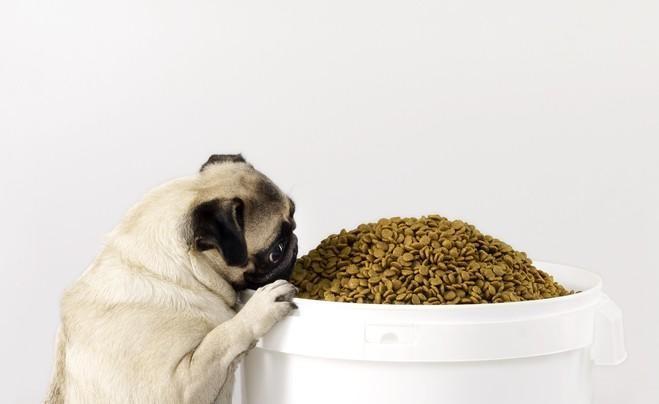 Manufacturing Process
Manufacturing Process
4+ MIN
20/01/2021
Scoop on Pet Food Storage
If you're like most pet owners who buy a bag of pet food, open it up, and pour it into a container for storage, we would like to comment that this common practice can make your food less nutritious and potentially expose itself. risks to your pet's health. Ideal storage conditions Hopefully, you've learned a lot from your vet and carefully (and objectively) select the best food for your pet. But what you do after you buy the food is an important part of keeping your pet healthy and safe and providing the best nutrition possible. Dry and canned pet food should be stored indoors at cool temperatures (ideally keeping the temperature below 80 ° F) with low humidity. When exposed to high temperatures or humidity, the fats in pet food can turn rancid and the nutrients in the food can break down. High temperatures and humidity also provide the perfect environment for mold and bacteria to thrive. Pet food shouldn't get too cold either, so avoid storing pet food outside where freezing temperatures are possible. Tip: Store your pet's food indoors in a cool, dry area. Extreme heat, cold, and humidity can affect the quality, safety, and nutritional value of food. Use bag protection Ideally, dry food should be stored in its original bag. Many manufacturers do a lot of research on packaging and test the shelf life of food in the original packaging. Not only can bags help minimize pests and other contaminations, but they can also help protect nutrients in food from spoiling. Plus, all the critical information you need about the food is on the label (UPC code, expiration date, etc). Tip: Lose your breath! After feeding your pet, squeeze as much air out of the bag as possible and seal it securely with the bag seal, a paper clip, or tape. Exposing dry pet food to air causes the nutrients to break down more quickly and can expose the food to bacteria in the environment. In case of emergency In addition to improving storage, keeping food in its original bag also allows quick access to crucial information in the event of a recall or foodborne illness. This includes the exact product and manufacturer, UPC code, lot number, and expiration date. Tip: If you don't store your pet's food in its original bag, record the manufacturer, exact product name, UPC code, lot number, and expiration date each time you start a new bag. This information can be cut from the label and filed or annotated and taped into the storage container. You can also take a photo of these key areas of the label to be stored on your phone. Pets: Keep them away! It is best to keep the food in its original bag and place it in an airtight container. If your pet gets into his own bag of food and overeats, or ingests food intended for another pet, he could become seriously ill. If the entire bag cannot be placed in the airtight container, keep it tightly sealed and out of the reach of your pet. Tip: Some pets are particularly dedicated and resourceful at opening food storage containers, so you may need to invest in an extra safe dog-proof container, or store the food in a room that your pet cannot access. Avoid pests Insects, rodents, and other pests can get into your pet's food. Keeping your pet's food in an airtight container helps keep pests out (as well as hungry pets!). Important, keep the food bag off the floor to minimize pests. Tip: If you are pouring your pet's food into another container, make sure that container has been completely used up before adding new food. Thoroughly wash and dry the container between new bags. Mites In addition to bacterial or rodent visitors, dry food can become contaminated with storage mites. This can happen when pet food is stored outdoors, but these sneaky little critters can also invade through faulty seals on pet food bags. They grow well in high-protein and high-fat foods, so most pet foods provide the perfect conditions. Tip: Pet food contaminated with mites can cause allergies in dogs and cats, one of the many reasons pets can be misdiagnosed with food allergies (true food allergies are very rare). Canned food Canned foods must also be stored properly. Generally, the storage temperatures of canned foods are similar to those of dry foods (40-80˚F). Avoid freezing canned foods as they can affect the taste, texture, and nutritional value of foods. Tip: Once you open a can of pet food, immediately refrigerate any unused food. Once opened, even if refrigerated, canned foods must be discarded after 72 hours. How long can you use it? Unopened pet food must be used before the "best buy" date on the label. How long pet food stays fresh after opening depends on many factors, including how you store it. To keep it as fresh and nutritious as possible, once you open a new bag of pet food, I recommend using it within 2-3 months. If your food bags last longer, I recommend buying the food in smaller bags. While these storage times and recommendations provide general guidelines, you can also contact the manufacturer of your pet's food; some have done extensive research on optimal storage conditions and shelf life testing of their individual products. Tip: Recommended storage times after opening and expiration dates may vary by manufacturer and individual products (for example, diets rich in fish oil tend to have a shorter shelf life). Check the expiration date on your pet's food bag to make sure you are feeding your pet the safest, freshest, and most nutritious food possible. Author: Clinical Nutrition By: All Pet Food
 Trends
Trends
3+ MIN
19/01/2021
Millennials: The new Customers of the Pet Market
Technologies have marked a before and after in our society. Consumption habits and lifestyles drastically changed and we can see this in what today characterizes each generation. The reality is that new generations adapt more easily to technologies and, as a consequence, create new ways of using them. Each generation is born in different contexts, so it is normal that today each one has its name: millennials, generation z, baby boomer, etc. The importance of classifying the generations is that each generation defines a type of customer. Customers want certain products according to psycho-sociological, generational and historical variables. Therefore, the objective of companies is to satisfy those demands with products that adapt to different niches. The Millennials We are particularly interested in the so-called Millennials, that is, all those people born from the 80s, who are characterized by being a digital generation, hyperconnected and with high social and ethical values. They are the generation most committed to their pets, and the one that currently invests the most in them: beauty products, accessories, daycare and veterinary services, and also in food. It is essential to take into account Millennials because today they are young adults who lead trends in the market and, logically, they are followed by other generations. There are many specific niches and that allows the market to launch more and more new, better and specialized products for these generations. Among them, the moist ones with super premium meats and differentials. Millennials seek to give their pet the best, especially when it comes to food. Research indicates that 86% of Millennials prefer a natural meal, with organic and healthy ingredients. Because they care that their pets eat healthy things, they look at where they come from, that is, the processes of the product developers. Hence, they look for sustainable companies committed to the customer, the environment and society. The perception of the Millennials What distinguishes Millennials is that they favored the humanization of pets. These consumers consider that their pets are part of their family and demand the same values for themselves. They look for products that not only satisfy nutritional needs, but also find individualization, comfort and quality in them. The reason behind pet ownership is that most Millennials see them as an experience that will prepare them to be parents in the future. Three-quarters of Millennials have cats or dogs, and in many cases more than one. Market research shows that 82% of Millennials who have pets prefer to have a pet before becoming parents because it "prepares you for the next step." This changes the perception that people have of animals and also the possibilities that companies can give customers. New, more sophisticated and complex products are appearing on the market, such as wet foods. They are looking for fresh, natural products, similar to the products that a human would like, such as pate. Annually $ 70 billion is spent in the pet (care and food) industry. In the USA 66% of households have one pet or more. This is a direct consequence of this new generation that is willing to spend large sums of money to give the best to their pets, causing the global growth of the industry. Baby Boomers For its part, the Baby Boomers generation is also important when thinking about market trends. They are all those people born between 1946 and 1964, after the birth rate exploded at the end of the Second World War. In the last decade, it became the group with the most pets. In just ten years, the percentage grew by 27 to 32% in dogs and cats. In particular, the dog was chosen as a companion throughout these years. And, in general, this generation is prone to adopting puppies once their dogs die. That is, they continue to be pet owners. Currently, all types of customers must be taken into account to understand what products need to be developed for the context in which we live. The consumption habits and lifestyles of generations have an impact on everything: type of product, packaging, formulas, differential ingredients, product claims, marketing and trends, sales channels and logistics. By: WMG
 Market Information
Market Information
5+ MIN
13/01/2021
The pet food industry after the coronavirus
Like the food industry, the pet food industry is also experiencing the impact of the pandemic. Several countries in the world have listed pet food as an essential activity, so many facilities have had to hire extra staff and adjust operations in the face of increased demand for food, either due to prevention and excess stock of the owners as well as the increase of purchase / adoption of pets. In this article, we will tell you what are the challenges that the industry must face related to the changes produced by the pandemic. In context: catering is for pets too Fearing sudden lockdowns and the waves of infections that seem to happen over and over again, people began stocking up so they wouldn't run out of food. The same goes for your pets' food. Almost 65% of consumers say they have enough stock to feed their pet for at least 3 to 4 weeks. At the industrial level, this type of behavior causes a sales boom in a short period of time. Sales were shot between 100 and 250% more than the previous year, depending on the geographical area and the impact suffered by the coronavirus. It can be said that the more restrictions due to COVID there are in a city or area, the greater the increase in sales for fear of possible confinement. As of March 20, and compared to the same period last year, overall pet store sales were up 92% as pet owners scrambled to stock up. In some of the worst affected areas, sales were significantly higher. For example, on the same date, New York City pet shops experienced a 260% increase in sales. As Amy Patteron, General Manager of Petsource by Scoular, states: "Even in uncertain times, people want to spoil their pets and feed them quality food." Increase in adoptions Today, there is no scientific evidence to ensure that pets spread COVID-19. This, together with the way in which many people worldwide had to re-engage with their work contributed to the increase in the adoption of dogs and cats in search of companionship and both emotional and mental support during the pandemic and mandatory confinements. The ASPCA saw a 70% increase in parenting programs from its New York City and Los Angeles programs. And some shelters have even been able to completely empty their kennels of pet waiting for adoption. Main changes in the pet food industry in the post-pandemic Increase in online sales This trend was seen in practically all areas of consumption, and pet food was no exception. There was an increase of up to 400% in traffic in online pet shops. It is uncertain how long this boom will continue or if it is here to stay, but in response to the increase in demand, many companies and pet food suppliers find it necessary to boost their production in order to meet demand. This is also reflected in the number of personnel hired in the sector. New business models in electronic commerce Electronic commerce was boosted in the pandemic due to the total or partial closure of physical stores to avoid crowds, either due to prevention or imposition of governments and, consequently, this behavior is also seen in the sale of pet food. However, exponential growth in a very short period of time led to the collapse of many of the electronic businesses that did not cope with either the delivery logistics or the stock, presenting up to more than a week of delay in delivery. Of purchases. As a result, different options were implemented to resolve the problems that occurred spontaneously, such as: • Many companies producing pet food offer withdrawal in large hypermarkets. • Glovo, Rappi and Uber have taken sides by being able to offer the withdrawal and delivery of food in a shorter period of time than that offered, in many cases, by the online stores themselves. As a consequence of this change in consumption, a new challenge is presented: to use, now more than ever, marketing and packaging in our favor. The presentation of the products must be the best to communicate their importance and their differential, especially when physical contact with the product itself has been so reduced and we have to "go through the screens" to convince the consumer. Safety and hygiene protocols in pet food: stricter than ever The pet food industry has been working under strict hygiene standards for a long time, but many producers have taken extreme measures and adapted production processes to minimize contact between their collaborators throughout the production process. Some of the measures adopted are: strengthening and communicating good hygiene practices, limiting direct contact between employees and carriers, carrying out complete sanitation and eliminating contact with personnel during shift changes. What was the positive impact of the coronavirus on the pet food industry? Through donations of money or pet food, many more businesses in the industry have pledged to help animal rescue organizations, homeless shelters, food pantries and struggling communities during these difficult times. "We encourage each and every company offering essential pet products to get involved and help out locally." Lanny Viegut, owner of Carnivore Meat Company. The pandemic caused economic problems around the world and consumers of pet food may have changed their spending patterns as their income affected. However, the humanization of pets even increased during the pandemic due to this heightened sense of "company", which is why the impact of reduced spending perceived by the pet food industry has been minimal. Without a doubt, we consider that the great positive impact of the pandemic is the acceleration of processes that, at times, in some industries, can be difficult to incorporate. In Latin America, the step that has been taken regarding the insertion of production companies and pet shops in the digital world has been immense, and we consider that it is an impulse that should not be wasted and, on the contrary, we must take care of promoting the insertion in the digital market. In conclusion No matter how much you refuse, getting on the digital and online shopping revolution is something that all companies and stores must succumb to if they want, in a world as uncertain as it is productive, to survive the changes and trends to come. By: All Pet Food
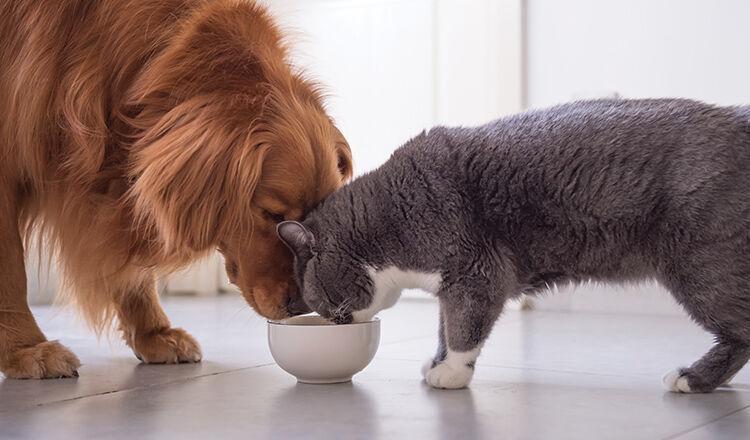 Cereals
Cereals
7+ MIN
12/01/2021
Make It Grain
Grain-inclusive diets for pets have continued to gain momentum as a valuable source of nutrition. There was a time when grain-inclusive diets started taking a back seat as grain-free diets emerged on the scene—but not anymore. Public opinion on grain-free diets shifted in a major way following the Food and Drug Administration's (FDA) statement implying that there was a link between these foods and canine heart disease. This inadvertently prompted pet parents to seek out and vet alternative diets, including grain-inclusive ones, to ensure their pet's diet safely fulfilled their nutritional needs. 'Since that report launched, we've noticed that consumers have not only become more aware of grain in a pet's diet, but have been more conscious of their pet's diet as a whole,' says Kate McCarron, top dog at Portland Pet Food Company. 'More than ever, pet owners are looking for variety in their pet's food.' As pet parents investigate and do their due diligence to learn more about how beneficial these diets can be, some are making the switch to grain. Even if the dust has settled on the whole grain-free/DCM controversy, manufacturers have found that more pet parents have opened up to the idea of using grain-inclusive diets. 'I think the momentum for grain-inclusive formulas has maintained,' says Robert Downey, president of Annamaet Petfoods. 'I think some pet parents have simply found that their pet does just as well on a grain-inclusive food and they often find these products are less expensive and equally nutritious.' Despite trends about the popularity of grain-inclusive diets over the years, the bottom line is that pet parents want a formula that can successfully support their pets' health and well being. 'Grains are just one category of ingredients with an excellent profile of nutrients and dietary fiber to include as part of an overall balanced diet,' says Heather Acuff, product development manager of Nulo. Going for Grains Within the grain category, there are different varieties to choose from, such as barley, corn, oats, rice, wheat, rye and sorghum. 'Wholesome grains like oatmeal, brown rice and whole oats are carbohydrates which provide a highly-digestible, readily available source of energy for pets,' says Natalie Asaro, MSc, companion animal nutritionist with Petcurean. 'These grains are also great sources of protein and fiber.' According to Kathy Gross, Ph.D., worldwide director of clinical nutrition at Hill's Pet Nutrition, grains have a purpose for both dogs and cats of all ages and can serve as a source of energy, plant-based protein, essential vitamins and minerals and healthy fiber. 'The nutrients in grains nourish the heart, help build strong bones and teeth, maintain healthy digestion and provide the calories needed for our pets' daily play and activity,' she says. In some cases, grains can also help improve a pet's health and address certain conditions. Dr. Gross shares that grain allergies are rarer than you might think and, 'properly balanced foods, designed with the right type and amount of grains, can be used as nutritional aids in the management of many pet health conditions.' Distinguishing the right type of grains is important for retailers and pet parents, since not all grains are viewed the same way. 'While there is no regulatory definition of ancient grains, they are considered grains that are unchanged by selective hybridization and genetic modification over the last several centuries,' says Acuff. 'The key differences between ancient and modern grains are seen in crop yield, crop hardiness, genetic diversity and nutritional composition.' However, not all grains offer the same nutritional content, which is something all pet parents should realize before picking out an option for their pet. 'A diet containing high levels of refined grains does not support immune health and increases the chance of immune mediated diseases in dogs, such as allergies,' explains Downey. 'Compared to refined grains, most whole grains provide more protein, fiber and other nutrients, including calcium, magnesium, potassium as well as phytonutrients.' With all the benefits they can offer, certain grains may end up being an important component of pets' diets, with more than one variety infused into a single formula. 'Grains are a great source of vitamins, minerals and fiber—they aren't just filler,' says Downey. 'Each grain has its own unique nutritional profile, so adding more than one will often improve the nutrient profile of the whole diet.' At the end of the day, to provide optimal nutrition for pets, grains are just one type of ingredient in a complete and balanced diet. 'It is important to have the right balance of nutrients in your dog's food, grains provide dogs with important digestible nutrients including energy, protein, vitamin E and linoleic acid,' says Dr. Gross. 'It is those nutrients that are crucial to a dog's overall health.' Selling Solutions It's imperative for manufacturers to have a crystal clear explanation as to where they source their products because educated pet parents care more than ever before. Pet food manufacturers have to be committed to transparency when it comes to the ingredients they use and their manufacturing procedures. Many manufacturers, such as Annamaet, rely on trusted suppliers and conduct their own independent lab testing. 'Our raw materials coming in are tested for aflatoxins and vomitoxins, and no product is released without salmonella and other bacterial testing as well as proximate analysis to ensure proper nutrient levels,' says Downey. Each grain product sourced can have a different nutritional value, as a result of how they've been sourced. '...I'd recommend looking into the processing of the grains,' says McCarron. 'If looking at a product cooked in large batches at an extremely high heat, it's unlikely that the grains hold any nutritional value anymore, whereas a slow-cooked meal will still maintain all of the benefits it originally held.' 'We also analyze each product's ingredient profile for essential nutrients to ensure your pet gets the stringent, precise formulation they need,' adds Dr. Gross. Asaro highlights that on top of looking for options that come from a trusted source and are formulated with quality ingredients, pet parents should consult the product's packaging to learn more about it. 'It's...critical to ensure the packaging includes all the important information from a nutrition perspective including an ingredient statement, guaranteed analysis, calorie content, feeding guidelines and a nutritional adequacy statement,' says Asaro. What's on the packaging matters, including the brand name. Since several companies offer a range of recipes, including those which are grain-free, provide high animal protein, moderate protein, plant-based protein or contain limited ingredients to address food sensitivities, retailers can provide a variety of solutions using one trusted brand. 'This will help ensure you are selecting a company that is well-experienced and not simply responding to a trend in the market,' adds Asaro. It's the responsibility of the retailer to convey as much product information as possible so customers can come to their own conclusions. It's also key for retailers to keep in mind that, before altering a pet's diet, a pet parent should consult with their veterinarian about the diet change. When it comes to pet nutrition, 'there can be a lot of misleading information out there, that's why it's more important than ever that pet parents get the facts needed to make informed decisions,' says Dr. Gross. Finding the Right Fit Before anything else, sales associates and retailers need to be educated about the benefits of using grain-inclusive diets. Thankfully, in addition to working with suppliers to secure all information about specific products, there is a ton of information online about grain diets for retailers to tap into. 'Share case studies, blogs and other information with sales associates so that they can feel confident assisting customers who may not understand the difference between grains and why they are so crucial to pet health,' McCarron suggests. Using online tools is key in our world today, and finding ways to engage consumers and educate them as much as possible about the options available to them will help you establish trust and authority in their eyes. 'It's important to provide opportunities to connect with your customers to provide the same level of guidance via chat, email or telephone,' says Asaro. In stores, sales associates will likely work with customers that have researched the grain diet and have an idea of what they're looking for. Asaro feels that when working with an educated consumer, the best service a sales associate can provide is to help guide them to the final decision that's best for their pet. Being passionate about your products and pet nutrition on the whole will go a long way, too. As sales associates discuss diets with customers, it's important for them to not limit their recommendations to one particular diet, but to showcase all the options available. 'A well-trained sales associate would not advocate for any particular type of diet above others,' explains Asaro. 'Instead, they will help pet parents understand that dietary requirements will vary by animal, and that the most important thing is ensure those needs are met.' by Jen Goetz - Pet business
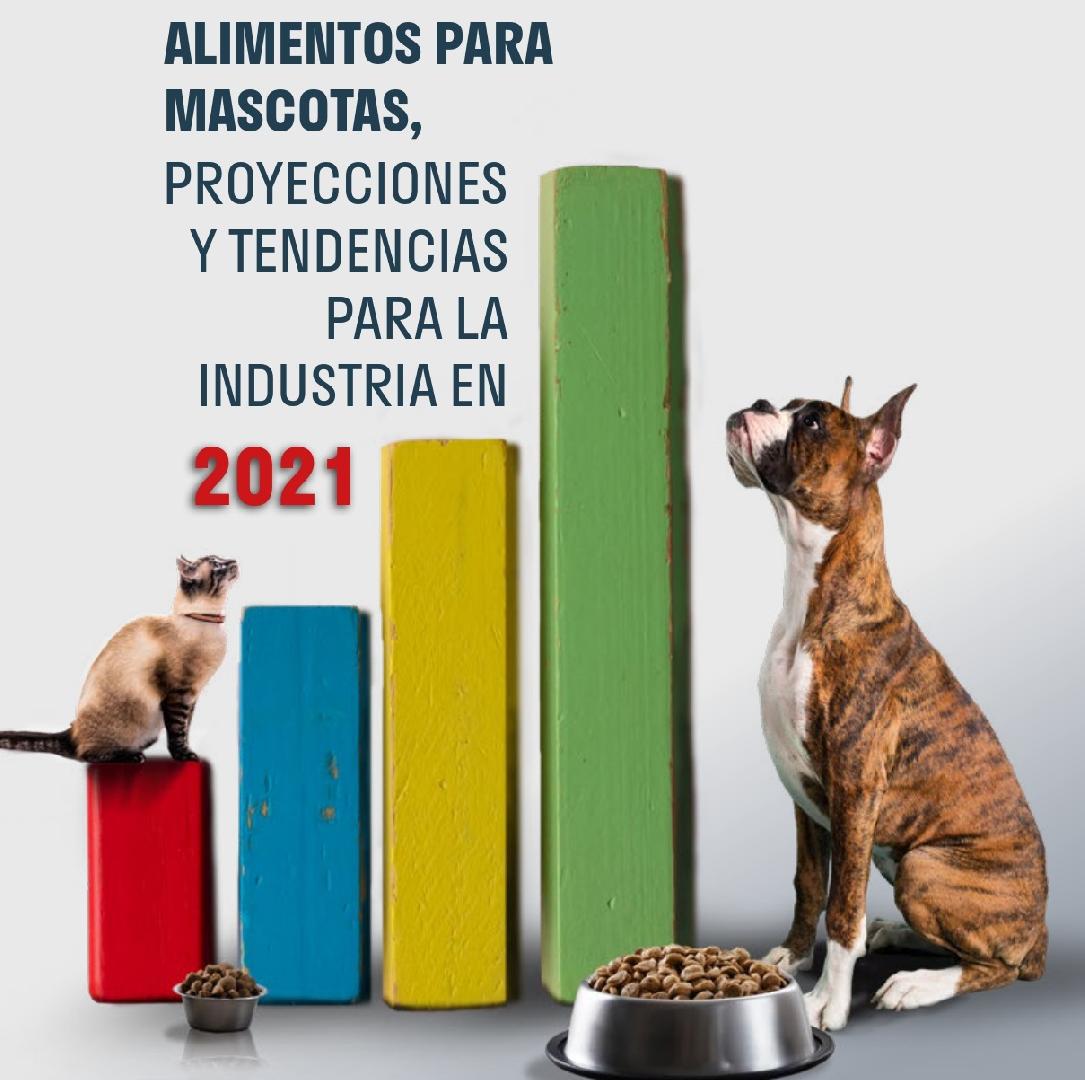 Manufacturing Process
Manufacturing Process
4+ MIN
07/01/2021
Challenges in the pet food industry
Even amid a pandemic that led to a global economic crisis, the pet food production market continued growing exponentially. Now, how to deal with so much demand? How to think about improving supply for 2021? In this article we will tell you what the biggest challenges are when it comes to implementing improvements or changes in the pet food industry. The context The growth in demand for pet food and the growing macro trends are consequently resulting in a higher demand for high-quality food. This undoubtedly presents many production challenges that, sooner rather than later, the market will have to face in order to respond to consumer trends and requests. Many of the tests that are done to certify, develop or choose a pet food over others are carried out on humans. Although of course, the taste systems are considerably different. Humans can have up to 10,000 taste buds, while dogs 1,700 and cats only 500. Hence, the sense of taste of these animals is built primarily from smell. Dogs have up to 300,000,000 olfactory receptor cells in their snouts, compared to 6,000,000 humans have. Also, the part of your brain dedicated to analyzing smells is, proportionally speaking, 40 times larger than ours. It is true that behavioral or palatability studies can be carried out on an ongoing basis with animals to determine the positive or negative effects of changes applied to processing, raw materials, aromas and / or presentation. However, they are not very effective, since the results they always produce are absolutely binary in nature, such as "accepted or not", "preferred or not", so the conclusions obtained from this type of study will always be limited. We can say, then, that the data produced by experimental studies based on human senses are more efficient methods to optimize the taste and texture of pet food, among others. As in any industry, when a level of quality is reached, certain challenges begin to seem the most difficult to face, and requires a lot of research, advances, technology and studies. Current challenges in the pet food industry Quality Most pet food or treat formulas use a wide variety of ingredients, from vegetables, beef, poultry, and fish, as well as powders, by-products, grains, and legumes. Inevitably, there are factors such as temperature, humidity and pressure that fluctuate between the production of one batch and another, which ends up affecting the final composition. To a greater or lesser extent, this causes a somewhat unpredictable use of the ingredients. Consistency As with most processed foods, making large volumes of production that are consistent with each other can be challenging. This usually happens in batch cooking and production methods. Presenting inconsistencies in the final product can be a great disadvantage for brands, since a consumer who begins to mistrust the quality of the product that he is giving his pet is, most likely, a lost customer. Production volumes As part of the fast-moving consumer goods industry, pet food manufacturers are in constant production. If you have a batch production with several steps that must be carried out manually, efficiency and productivity are reduced since, instead of producing in parallel, it is produced in series. In a volume-dependent industry such as pet food, every second of additional production can make a difference. For this reason, it is advisable to automate as much of the process as possible, since this provides the assurance that the actions are carried out as they should. We also find it very useful to automate control systems, to guarantee that those factors that can alter the final product such as temperature, steam and humidity always remain at the desired level. At a time in the industry like the current one, at the height of the importance of premium food and the humanization of pets, it is essential to use in our favor the predisposition of people to pay a little more money to obtain a product from nutritional quality that does not present alterations or modifications in the daily diet of your pets. Consistency is directly related to the growth or increase in demand for one or another food. Maintenance is the key Kate Rome, President of Rome Grinding Solutions, Sheldon, Iowa, states: 'The pet food industry, in our opinion, is growing at a very fast rate. The customers we currently serve, in order to meet the high demand for their products, cannot afford to have their equipment out of service for an extended period of time. Therefore, preventive and planned maintenance is a priority. " One of the keys to improving the production processes of the industry is to have a strict control and maintenance system of the equipment used in the different stages of the process. Maintaining the general effectiveness of the equipment requires responsibility in its use, from doing it with the appropriate tools, to sophisticated algorithms that identify abnormal vibrations in its operation. Planning required maintenance can not only avoid wasted time and raw materials in the event of something going wrong in the middle of a process, but also increase production, lower setup (and downtime) costs, improve inventory allocation, reduce labor costs and minimize quality problems. In conclusion Nowadays, every client has the right to be selective, and pet owners are not far behind: they want to choose a product and that it is in charge of providing nutrition, well-being, care and quality, a somewhat demanding equation. It is true that with the appropriate machinery, production processes can be more efficient and accurate, but without a doubt, we will have to continue researching and studying how to improve our final product to not only reach more people but also to satisfy those who already choose each brand in particular. Are you already working on these points? By: All Pet Food
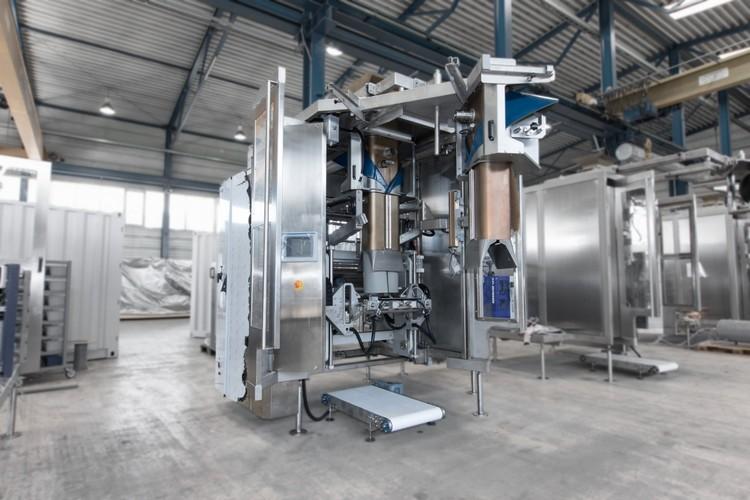 Packaging
Packaging
3+ MIN
29/12/2020
Increasing the Shelf Life with Innovative Packaging Technology
Since 1990 Connolly's Red Mills has been packaging horse and pet food with STATEC BINDER machines.
At that time, STATEC BINDER was still integrated into Binder+Co AG. The years went by and Connolly's Red Mills grew and therefore also required further packaging and palletizing systems. As the company grew bigger, more and more products were exported. At this stage, Connolly's Red Mills faced a unique problem: the shelf life of horse feed was limited to a few months. So how could the shelf life be increased? The solution was found together with STATEC BINDER: Nitrogen fumigation during filling.
Connolly's Red Mills is an Irish family business, founded in 1908. The company is divided into three divisions: pet food, agriculture and the core business horse feed. Red Mills specializes primarily in the feed of racehorses. 'When we received inquiries for shipping around the world, we were restricted by the shelf life of our products,' says Joe Connolly, CEO Connolly's Red Mills.
'As the export business grew, so did the challenge of how to get beyond the island of Ireland. Since the climate in Ireland is damp, we struggled with the shelf life of the product when we went into warmer climates. STATEC BINDER was the company we were closest aligned with, so we discussed this challenge with Josef Lorger,' continues Joe Connolly.
'To be successful and to offer your customers the perfect solution for the packaging of their products, you have to be flexible as a company, understand the customer's individual requirements and most importantly, you have to be willing to offer customized solutions. This is exactly the strength of STATEC BINDER. That's why we accepted the challenging project from Red Mills to increase the shelf life of their products and started developing the bagging machine,' explains Josef Lorger, Managing Director STATEC BINDER.
The SYSTEM-F, a vertical FFS packaging machine, was an excellent choice in the development of a solution for this particular challenge. The increased shelf life of the product was achieved by developing a special system that provides nitrogen fumigation during filling. Due to the nitrogen fumigation, the oxygen level in the filled bag is reduced, and thereby the shelf-life is increased. Through additional air suction before closing, the filled and closed bag is perfectly shaped for an equally well-formed pallet.
In addition to STATEC BINDER's developments, the bag film for Connolly's Red Mills has also been specially developed. The multi-layer film ensures that the vacuum in the filled bag is maintained and that no oxygen can enter.
'STATEC BINDER's contribution to our company was unique and profound. More specifically concerning the shelf life issues that we were facing in our export markets. This is where the STATEC BINDER team, who helped us to develop our unique NFMS (Nutrient Fresh Management System), has delivered the greatest benefit. Customers can now buy our products with a real shelf life of 26 months and the products are now delivered across 76 countries,' says Michael Connolly, Director Business Development Connolly's Red Mills.
But it was not only the further development of the SYSTEM-F packaging machine that was a challenge in this project. Due to only limited space available in the existing warehouse, the high-level palletizer PRINCIPAL-H did not fit into the available space in its standard version. For this reason, the PRINCIPAL-H was also adapted for Connolly's Red Mills. The filled bags from two packaging machines are conveyed to the palletizer
In the standard version, the bags would be transported to an inclined infeed conveyor which is normally installed in front of the palletizer. However, as the space was too limited, the inclined infeed conveyor was installed underneath the PRINCIPAL-H. This means that the filled bags are now transported from behind via the inclined infeed conveyor upwards to the palletizer and are fed to the palletizer via a tilting belt at the highest point. The bag then moves back onto the palletizer and is turned into the correct position for the layer of pallets and pushed forward onto the loading plate.
'STATEC BINDER does an excellent job for us and gives us access to markets worldwide', adds Joe Connolly.
by All Extruded
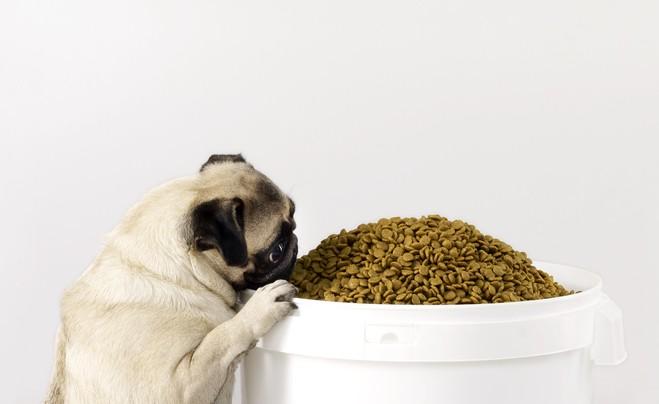 Packaging
Packaging
5+ MIN
28/12/2020
The Scoop on Storing Pet Food
If you're like most pet owners, you buy a bag of pet food, open it, and pour it into a container for storage. But it turns out that this common practice may make your pet's food less nutritious and potentially expose your pet to health risks. Ideal storage conditions Hopefully, you've learned a lot from your vet and you carefully (and objectively) select the best food for your pet. But what you do after you buy the food is an important part of keeping your pet healthy and safe, and providing her with the best possible nutrition. Dry and canned pet food should be stored indoors in cool temperatures (ideally, keeping the temperature under 80˚F) with low humidity. When exposed to high temperatures or humidity, fats in pet foods can become rancid and nutrients in the food can break down. High temperature and humidity also provide the perfect environment for mold and bacteria to thrive. Pet food shouldn't get too cold either, so avoid storing pet food outdoors where freezing temperatures are possible. Tip: Store pet food inside in a dry and cool area. Extreme heat, cold, and humidity can affect the quality, safety, and nutritional value of the food. Use the bag's protection Ideally, dry food should be stored in its original bag. Many manufacturers put a lot of research into packaging and test the shelf life of the food in the original packaging. Not only can the bags help to minimize pests and other contamination, but they can also help protect the nutrients in the food from breaking down. In addition, all the critical information you need about the food is located on the label (UPC code, 'best by' date, etc – see below). Tip: Lose the air! After feeding, squeeze out as much as much air as possible from the bag and close it securely using the bag's seal, a bag clip, or tape. Exposure of dry pet food to air causes nutrients to break down faster and can expose the food to bacteria in the environment. In case of emergency In addition to improving storage, keeping food in its original bag also allows quick access to crucial information in the event of a recall or foodborne illness. This includes the manufacturer and exact product, the UPC code, lot number, and 'best by' date. Tip: If you don't store your pet's food in its original bag, record the manufacturer, exact product name, UPC code, lot number, and 'best by' date each time you begin a new bag of food. This information can be cut out from the label and filed or written down and taped to the storage container. You can also take a photo of these key areas of the label so they're stored on your phone. Pets: Keep out! It's best to store the food in its original bag with the entire bag placed in an airtight container. If your pet gets into his own food and overeats or gets into the food intended for another pet, he could get very sick. If putting the entire bag in the airtight container is not feasible, keep the bag tightly sealed (see above) and out of your pet's reach. Tip: Some pets are particularly dedicated and resourceful at opening food storage bins so you may need to invest in an extra secure dog-proof container or store the food in a room that your pet can't get access to. Avoid pests Insects, rodents, and other pests can get into your pet's food. Keeping your pet's food in an airtight container helps to keep pests out of it (in addition to hungry pets!). In addition, store the food off the floor to minimize pests. Tip: If you pour your pet food into another container, be sure the food in that container has been completely used up before adding new food. Wash and completely dry the container between new bags. Storage mites In addition to bacterial or rodent visitors, dry food can become contaminated with storage mites. This can occur when pet food is stored open to the air but these sneaky little critters can also invade through defective seals in pet food bags. They grow well in foods rich in protein- and fat-rich foods, so most pet foods provide perfect conditions. Tip: Pet foods contaminated with storage mites can cause allergies in dogs and cats, one of the many reasons pets can be incorrectly diagnosed with food allergies (true food allergies are very uncommon). Canned food Canned food also needs to be stored properly. Generally, storage temperatures for canned food are similar to those for dry food (40-80˚F). Avoid letting canned food freeze as it can affect the taste, texture, and nutritional value of the food. Tip: Once you open a can of pet food, refrigerate any unused food immediately. Once opened – even if refrigerated – canned food should be discarded after 72 hours. How long can you use it? Unopened pet food should be used before the 'best buy' date on the label. How long your pet food stays fresh after you open it depends many factors, including how you store it. To keep it as fresh and nutritious as possible, once you open a new bag of pet food, I recommend using it within 2-3 months. If your food bags last longer, I recommend buying the food in smaller bags. While these times and storage recommendations provide general guidelines, you can also contact the manufacturer of your pet's food – some have done extensive research on optimal storage conditions and shelf life testing for their individual products. Tip: Recommended storage times after opening and 'best by' dates can vary with by manufacturer and for individual products (for example, diets high in fish oil will usually have a shorter shelf life). Check the 'best by' date on your pet's bag of food to ensure you're feeding your pet the safest, freshest, and most nutritious food possible. by Clinical Nutrition
 Conveying Systems
Conveying Systems
2+ MIN
17/12/2020
Interested on moving materials in a safe clean and efficient manner? Cablevey Tubular Drag Conveyor has the right Solution
Pet food manufacturers can maintain product quality and enhance processing by utilizing gentle tubular cable conveyors to transfer products throughout a processing plant. According to Cablevey Conveyors, tubular cable conveying helps maintain product integrity and minimizes fines, which reduces waste and helps keep the processing environment clean. Additionally, tubular conveying uses smaller motors and less energy.
'In the pet food industry, a wide range of fragile, high dollar value food products can be prone to excess breakage when conveyed at high velocity by air-power, such as in pneumatic and aeromechanical systems,' said Karl Seidel, marketing director. 'A more profitable alternative to protect sensitive, high-value pet food products is to utilize tubular cable conveyors, which move product through a sealed tube using a coated, flexible stainless-steel drag cable pulled through on a loop. Solid circular discs (flights) are attached to the cable, which push the product at low speed through the tube without the use of air, preserving product integrity and minimizing waste.'
According to the company, pet food industry manufacturers can decrease product damage down to 1-2% with a slower process such as a tubular cable system. Cablevey is a specialty material moving, mechanical conveyor company that has designed, engineered, and serviced enclosed cable and disc tube conveyors for almost 50 years, and is in more than 66 countries.
Cablevey systems can convey up to 2000 cubic feet per hour (56.6 meters per hour) of product with numerous layouts using multiple inlets and outlets. These systems can also significantly reduce energy use and noise. Pneumatic systems convey product at high velocity that typically requires larger motors that control fans, blowers and rotary valves. Aero-mechanical systems, running at high speed, can generate considerable motor and disc noise.
The smaller motors utilized by tubular cable systems require less energy and are typically quieter overall. According to Cablevey, a tubular cable system utilizes about one-tenth the energy used by pneumatic systems. In terms of noise, a low-speed tubular cable system is quiet enough to easily have a conversation around it while it is running, the company reports.
The enclosed tube conveyors help keep both materials and plant sanitary. Wet, dry and in-place cleaning options are available to reduce cleaning time, labor and required resources.
by Pet Food Processing
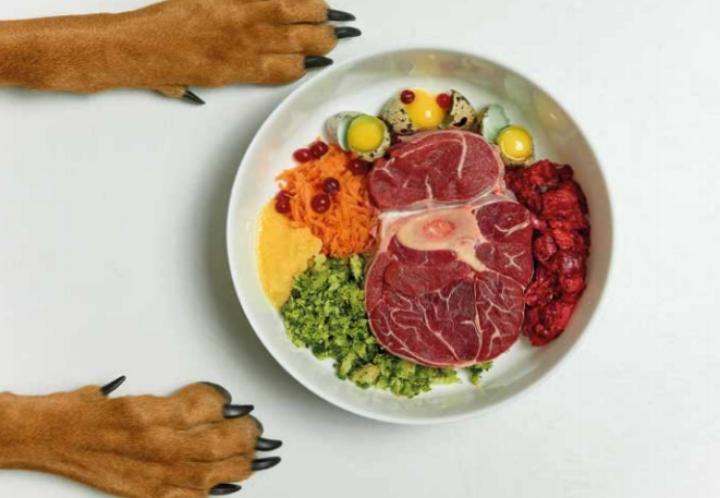 Macro Ingredients
Macro Ingredients
8+ MIN
16/12/2020
Plant and Animal Nutrient Sources for Dry Pet Food
In this latest installment of the series on ingredients for making pet food, we will analyze the sources of nutrients for dry foods, which represent 96% of sales volume in Latin America and therefore a very important source of commercial transactions. Although most of these ingredients are used in food for all types of animals, it is very important to define an exclusive specification for pets that considers one of the most important parameters of our industry to achieve success: the sensory properties, specifically the palatability of the individual ingredients. Ingredients used in all market segments Corn (Zea mays) 1 Corn is the most used raw material in the pet food industry, it represents in some products up to 60% of its formulation and in regions such as Latin America it can represent 50% of the volume of purchases of ingredients in companies. In each ingredient we will focus on a technical aspect of quality, in the case of corn it will be the reception controls of the ingredient, that is, the acceptance criteria. Since it represents 50% of the purchase volume, it is a very important ingredient from every point of view. There are different genetic varieties of corn in the world, the most suitable for the manufacture of pet food is yellow corn and in terms of commercial classifications it must comply with USDA grade 2, as a minimum. Of all the quality requirements for yellow corn, the most important to control is the mycotoxin content, particularly aflatoxins, since pets are particularly sensitive to these contaminants. A thorough review of toxins from fungi is outside the limits of this work, we suggest going deeper into Munkvold (2). Before reviewing the most appropriate parameters to receive corn in a production plant, we will clarify that it is essential to have a very efficient sampling system to obtain representative portions of the several tons of corn that are received in a company monthly. The most common specification for corn used in pet food is as follows: Corn is one of the main sources of energy in food, the energy comes from starches, amylose and amylopectin, which are also the main components to be modified by gelatinization during the extrusion process. Therefore, it is an ingredient that has nutritional and functional properties (functionality is the technological behavior in the production process). This is why the quality of the corn has an impact on the food format, the behavior of the extrusion system, the digestibility and the density of the final product. Reasons why monitoring of this ingredient is of utmost importance. Rice (Oryza sativa) Rice is the third most used cereal worldwide in the manufacture of pet food, in some regions it is used even more than corn since the price and availability are better. Rice has a better digestibility (3) level than corn and its starches are also more functional in commercial extrusion systems. These two reasons place it as a cereal of choice in the formulation of premium diets that do not have the restriction of being grain-free. The incidence of contaminants in rice is comparatively lower than in corn, however, a careful mycotoxin analysis is essential before enabling its use in an industrial formulation. The quality parameters usually required for rice used in pet diets are: Description: brewing broken rice, quarter grain or higher. Without added additives. As seen, whole grain is not used in pets but broken grain, the fundamental reason is the cost of the whole grain and the fact of avoiding competition with human food. Since the broken grain is more likely to deteriorate it is very important to be strict with the quality control of this ingredient and with the storage conditions. Animal fats (Chicken oil) Chicken oil, beef tallow, pork tallow and fish oils are generally used as animal fats in the production of pet food. Samples that the first three fulfill functions of providing energy and flavor, fish oil is fundamentally a source of unsaturated fatty acids omega 3 and 6. In this article for reasons of space we will only analyze chicken oil, being the requirements applied to this ingredient applicable to other fats from different species. All animal by-products come from the remnants of the meat-processing industry for humans, for economic and environmental reasons all parts of the animals that are not consumed must be transformed into usable and non-polluting by-products. Thus, for example, from the poultry industry, after the chickens are processed, there are remaining feathers, blood, viscera and some unconsumed parts. The feathers are hydrolyzed and converted into feather meal, the blood is spray dried and is a source of protein for the animal feed industry, and the viscera are cooked in digesters with steam and pressure, generating two products, a high-content meal. protein of great digestibility and palatability, chicken gut meal, which we will review later, and chicken oil. Given that the production processes of these animal ingredients are not completely standardized, it is very important to clearly define what you want to buy, for example in the case of chicken oil, a concise definition can be the following: 'Chicken oil resulting from the first filtration of the digestion process of fresh chicken entrails. Product obtained from the fusion of avian tissues from the commercial slaughter process in authorized cold stores. It consists essentially of glycidic fatty acid esters and does not contain free fatty acids or other matters obtained from fat. The raw raw material must be stabilized with an antioxidant during cooking to avoid the development of peroxides. Industrial chicken oil must be stabilized with BHT, BHA, tocopherols (300 ppm). The raw material may not be more than 12 hours at room temperature before its treatment. " As can be seen, the definition of the ingredient involves the parts of the animal that take part in the process, the type of manufacturing process, and the conditions of the raw material. Another important piece of information to be provided to suppliers in the product specification is the level and strategy of anti-oxidation of the fat, which is essential for the ingredient to be suitable for food manufacturing (4). From a physicochemical and organoleptic point of view, chicken oil must meet these requirements at least: The chicken oil is added to the outside of the food in an operation known as application, the objective is to add energy, but also palatability and shine to give a more attractive appearance to the final kibbles. Since the application operation proceeds at low temperatures, if the oil is microbiologically contaminated, so will the final product, for which the microbiological control in the reception and storage of this ingredient must be strict. Ingredients used preferably in food of the economic segment Wheat bran The bran is a residue of the milling of the wheat grain, made up of the husk (pericarp) and mixed with the surface part of the albumen or germ (endosperm). In general it is presented as fine powder, flakes or pellets. It is a product with drawbacks and benefits, the greatest benefit is that it contains a high percentage of proteins at a very affordable price, the major drawback is that it can have high concentrations of vomitoxins. In cheap foods it is a fundamental ingredient due to its low level. The quality parameters usually specified are the following: Soybean flour Soy flour is a very complete and inexpensive source of vegetable protein, it is obtained from the processing of soybeans. The process consists of the extraction of the oil and subsequent cooling of the flour that remains after the extraction. Although the protein is of good nutritional quality, due to the heat of the extraction process it loses all its functionality, this important quality of the ingredients is preserved by the soy isolates, which we will review later. The most common parameters are: Soy flour is generally the second ingredient in purchase volume after corn in a typical Latin American plant. It is therefore another very important ingredient for the industry (5). Ingredients used preferably in standard segment foods Bovine Meat and Bone Meal (6) Meat meal is the main source of animal protein used in pet food, it is a by-product of bovine slaughter, fresh viscera and other by-products of beef slaughter are processed in digesters at high temperature and pressure immediately. such a way to avoid the development of biogenic amines such as histidine. It cannot include blood, hair, horns, hooves, and leather. It must not contain additives or adulterants, toxic or harmful materials and any part of another animal that is not cattle. When the cooking product is pressed, the bovine tallow and meat and bone meal are isolated. Typically it has these physicochemical parameters: Organoleptic parameters: Wheat (7) Wheat is the second most used cereal in the world to make pet food, both rice and wheat are related to standard or premium segment foods. In addition to being a source of energy through its high starch content, it also provides good quality protein and fiber. The most common specification in the industry is USDA grade 3 or higher. Organoleptic requirements: The most dangerous contaminant in wheat is DON vomitoxin, from the fusarium fungus that grows and produces mycotoxins under specific conditions of humidity and temperature, generally related to harvests in rainy seasons and storage of very humid wheat in hot climates, when this situation occurs, it is important to tighten the controls of this parameter. Ingredients used preferably in premium segment foods Chicken by-product meal (8) Chicken by-product meal is one of the most digestible animal protein sources available on the global ingredient market. On the other hand, in recent decades a major effort has been made to standardize this ingredient by poultry companies and the animal feed industry, generating a high added value ingredient with very specific quality controls and an industrial standard, commonly used in various countries around the world. The description of the ingredient is the same as for chicken oil, come from the same production process and are separated during the pressing operation, followed by the typical parameters of a chicken meal: Organoleptic parameters: This has been a non-exhaustive review of ingredients used in the pet food industry, there are hundreds of materials that could not be analyzed for reasons of space and priority, we nevertheless believe that we have covered the most relevant ones and make clear the bases of the many facets that make up what is considered a suitable ingredient for making pet food. For any further questions, do not hesitate to contact the author. 1) Parera, Carlos. Producción de maíz dulce / Carlos Parera. - 1a ed . - Ciudad Autónoma de Buenos Aires: Ediciones INTA, 2017. 2) Mycotoxins in corn: occurrence, impacts, and management. GP Munkvold, S Arias, I Taschl, C Gruber-Dorninger - Corn, 2019 – Elsevier. 3) Riitta Kempe, Markku Saastamoinen, Seppo Hyyppä. Composition, digestibility and nutritive value of cereals for dogs. Agricultural and Food Science · September 2004. 4) National Renderers Association. 2003. A Buyer's Guide to Rendered Products, 15-16. 5) http://www.fundacionfedna.org/ingredientes_para_piensos/harina-de-soja-47-pb, consulted 15/09/2020. 6) For more information see http://www.senasa.gob.ar/sites/default/files/ARBOL_SENASA/INFORMACION/NORMATIVA/4238/capitulo_xxiv.pdf 7) Kloster, Andrés. Utilización de trigo en alimentación animal. 2015. INTA Marcos Juárez. 8) Hertrampf J.W., Piedad-Pascual F. (2000) Poultry By-Product Meal. In: Handbook on Ingredients for Aquaculture Feeds. Springer, Dordrecht. By: Juan Manuel Peralta
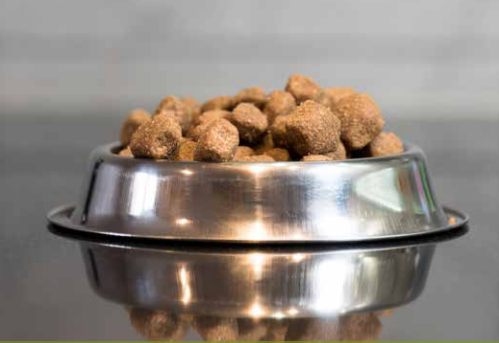 Macro Ingredients
Macro Ingredients
11+ MIN
14/12/2020
All about a súper premium fiber system
In our note in the Agroindustria Magazine of its edition No. 147, we made a general description of the historical fiber and the new forms accepted by international organizations. We also told about the types of fiber offered by the market, functions, virtues and where we wanted to continue seeding the field of fiber systems. Aiming that there are more and more professionals, technicians or those responsible for thinking, assembling and deciding the ingredients in pet diets, we invite you to consider and incorporate these parameters of dietary fiber, soluble and insoluble in their formulators. We are going to see throughout this note the importance of including them, and how it became a market trend, a point that we are going to corroborate with the conclusions. They ask us for more, more specific suggestions, type of application, inclusion rate and times. And perhaps the answer is: the most successful combinations between them. They also raise many doubts, which we will try to guide, based on our own experiences or those of others; and we will leave the door open to co-create, to think about it together, to achieve the best solution in each case. Total dietary fiber is made up of insoluble (FI) and soluble (FS) fiber. Insoluble fibers, they are not insoluble in aqueous media such as intestinal and classic examples are the structures of vegetables: lignin, cellulose and some hemicelluloses. Cereal grains are especially rich in water-insoluble fibers, found in greater amounts in wheat and corn. They have a sponge effect, they are able to retain water in their matrix, several times their own weight, forming low viscosity mixtures. They lead to an increase in fecal mass and a greater acceleration of intestinal transit. They are not very fermentable because they resist the action of microorganisms in the intestine. This is why the logic of using insoluble fiber in the treatment or prevention of constipation. Soluble Fibers, their solubility simply refers to the fact that they dissolve in aqueous media. They are viscous fibers, which form gels naturally and their range is very varied depending on how simple or complex their chemical structure is and whether or not they have the ability to be prebiotic. For example, going to the smallest or simplest: oligosaccharides (fructooligosaccharides, galactooligosaccharides, xylooligosaccharides, and isomaltooligosaccharides), inulin. And if we go to something larger or complex, we find: pectins, hydrocolloid gums, resistant starch, polysaccharides from algae, non-digestible sugars polydextrose, methylcellulose, carboxymethylcellulose, hydroxymethylpropylcellulose and others. If we cite some ingredients rich in soluble fiber, we find legumes, oats, barley, beets, carrots, apples and many other fruits and vegetables. Fermentability of dietary fiber: it is the digestion process that takes place under anaerobic conditions in the large intestine, where bacteria, with their numerous enzymes, can digest it to a greater or lesser extent depending on its structure. This process is fundamental, since thanks to it the development of bacterial flora takes place, as well as the maintenance of the integrity of the intestinal epithelium, which is relevant for the absorption and metabolism of nutrients. Both soluble and insoluble fibers live in a flexible balance and well associated achieve important health benefits. SEASON II: AND THE WINNER IS ... What makes fiber so important? What describes our product beyond how attractive our packaging may be. This point is very important to answer us and the first thing we must be clear about. The degree of fiber contribution in our food gives a visible result by the owner, as few ingredients, since it will define the type of feces and presence of gases. If we make a mistake in the formulation, in the chosen ingredients or in their balance, we may end up in diarrhea or gas formation in the animal, where the direct responsible will be the content of that bag with which they feed their pet daily. . And with this ingredient we will be closer to the right path: better quality feces, easy to collect and minimal gas formation. Up to substantial improvements in digestibility and absorption. Being a great complement to prevent pilobezoars, gastric dilation and volvulus, obesity, diabetes and kidney diseases. Pet nutrition is currently increasingly focused on the use of food (digestibility studies) and on improving human-animal interaction as much as possible. Among this interaction is also the fact of how to reduce the number of stools per day, improve fecal characteristics, consistency, moisture and odor. It is also sought with commercial foods, not only an appreciable body condition, including fur, but also the prevention of diseases. How will fiber do that? Each part of the fiber system fulfills its function. An INSOLUBLE will absorb water and act as ballast to keep traffic active, without pause. Movement Yes always, Speed No The other SOLUBLE will form a viscous solution from the stomach, slowing gastric emptying, generating satiety and decreasing appetite. Already in the large intestine, depending on the type of fiber, it can only improve the pH of the medium or it will also have a great capacity to be fermented. This fermentation will be able to multiply bacteria and the more bacteria, the greater the digestion of everything that was not previously digested by gastric and duodenal enzymes. It improves the general digestibility and in particular the protein digestibility. Passage rate: it is the physical variable that we determine with the fibers. Digestion depends on enzymes and the rate of flow within the intestine (rate of passage). This will determine the contact between enzymes and food and between nutrients and absorbing surfaces. Digestibility: information on the chemical composition of a food is of little use if its digestibility is unknown. Digestibility studies are used as a measure of quality. A highly digestible food results in a greater amount of nutrients available for intestinal absorption, therefore, a less necessary amount of food to satisfy requirements. Factors that affect the digestibility of the feed: Although there are multiple factors that can affect it, such as the quality of each raw material, time since harvest, process variables, temperatures, pressure, etc., several authors agree that excesses in the inclusion rate of fiber, especially insoluble ones, It will give fiber the ability to affect its own digestibility as well as that of other nutrients, such as protein and carbohydrate digestibility. Understanding that the variable 'fiber' is one of the essential factors in this regard. Fiber-linked digestibility Different authors concluded that the inclusion of increasing levels of crude fiber in pet diets negatively affects the digestibility of dry matter. Mainly due to an increase in the rate of passage and less contact with food enzymes. As after the inclusion of prebiotic soluble fibers, changes are observed in microbial populations that lead to greater digestibility of nutrients at the hindgut level. In vivo studies on prebiotics such as fructooligosaccharides and inulin have shown encouraging results, attributed mainly to their effect on fiber utilization, the apparent absorption of calcium and phosphorus, and the modulation of hindgut fermentation. The daily production of feces has an inverse relationship with the digestibility of the food. As the digestibility of the diet increases, the stool volume decreases and solid, better-formed stools are produced. At the same amount of food consumed, with a difference in digestibility respectively. Heces quality: they can be evaluated quantitatively (number of daily defecations, weight, DM content, pH) and qualitatively (visual classification) considering consistency and shape, applying a numerical scale. Fiber increases the volume and water retention of the intestinal content, is fermented by the colon microflora with the production of volatile fatty acids and lactic acid, modulates intestinal transit time and different authors suggest that it is necessary to include a certain amount of fiber to maintain the health and optimal function of the entire gastrointestinal tract, as well as for the control of body weight and the treatment of obesity, since they lead to a state of satiety of the animal. The optimal amount of fiber inclusion occurs when the stool is soft enough to prevent constipation, but firm enough to prevent diarrhea. Fiber size and absorption capacity The different effects of the fiber will depend on the physical characteristics of the fiber. Trials observed that different sizes of insoluble fiber particles produced different effects and that the largest size, 200 to 300 microns, was the most effective in producing better quality feces, compared to fibers of smaller size 30 to 70 microns. Fecal PH is the thermometer of the intestinal microbiota. It is a parameter that is directly related to the fermentative activity of the intestinal microflora. Greater fermentation, higher levels of volatile fatty acids and lactate that can be used by the animal as a source of energy, maintain the health of the intestinal epithelium, reduce the incidence of intestinal pathologies and control the proliferation of pathogenic microorganisms by reducing the pH. The ingredients of the diet that are not digested and absorbed in the small intestine pass to the large intestine where they are fermented by the microbiota. In addition, the addition of fermentable fiber to the diet of dogs leads to an increase in the production of acetic, propionic, butyric and lactic acids, being fructooligosaccharides the ones that generate a faster production of these and together there is a decrease in fecal pH. Fecal pH values were reported that were between 6.5 to 6.8 for dry diets and 7.0 to 7.1 for semi-humid diets. Lower pH values are associated with VFA concentrations and inversely with fecal NH3 concentration. With these parameters in mind: Digestibility (consumption - less excreta) - stool pH, volume and consistency, we decided to carry out a few short tests. SEASON III SUPER ACTION FIBERS Assay I: randomized crossover experimental with an objective of observation in Excreta Quality and Digestibility. Using as a base a Premium commercial food, applying a 4% inclusion rate of dietary fiber and whose only variant was the type of fiber. Using a common ingredient like beet pulp vs. a predetermined fiber system, both ingredients with the same percentage of total dietary fiber: 65%. For 10 days in 10 dogs. Average results: Dry Matter Digestibility 74%. Crude Protein Digestibility 81% (1.5% better for fiber system). Digestibility of the Ethereal Extract 93%. For more challenge, at the end of the trial we added a period with overeating. A diet twice the intake to cover the maintenance requirement. No physical or physiological alteration compatible with a pathological state was observed in any of the treatments. Observations: We did not obtain significant differences. They both gave very similar performances. The fiber system had a plus of prebiotic fibers, which had not manifested. Conclusion: After months of analysis and research we reached the deduction that the trial time was not enough to see manifestations of the ingredients in the food. The intestinal microbiota is progressive and adaptive. A new challenge in inclusion rate and time. Assay II: experimental crossed, random with objective of observation in and Quality of Excreta and Digestibility. As a base we use a Premium commercial food using a frequent ingredient such as beet pulp at a 3% inclusion rate vs. Default fiber system at 4% inclusion rate. Both ingredients with the same percentage of Total Dietary Fiber: 65%. For 40 days in 6 dogs. Total Digestibility: It was 6.7% higher for the fiber system. Average Deposits: It was 5% lower for the fiber system. Moisture percentage: It was 1.5% lower for the fiber system. Results: we observed the effect of the soluble and insoluble combination (predetermined fiber system) and the evident contribution of prebiotics. Conclusion: Marked effect on digestibility. Can you jump from an economic food category to Premium only by varying the type of Fiber? Organizations such as the European Pet Food Industry Federation (FEDIAF), NRC (National Research Council) and the AAFCO (Association of American Feed Control Officials), agreed on the dry matter digestibility criterion (dMS) as one of the parameters to classify food according to its nutritional adequacy in standard, premium and super premium. Qualifying as generic or standard those with dry matter digestibility close to 72%. Understanding that, without being a rule, the premium and super premium are made with higher cost ingredients, of quality and more stable formula, whose dry matter digestibility is greater than 78%, with firm and scarce stool production. Greater digestibility, lower stool production and better feces consistency. Tips for soluble fibers: They develop the intestinal microbiota and that is a process that requires a few weeks, it has no magical effect. The smaller, 4 to 10 monosaccharides in the chain, the BETTER, the faster they will be fermented, from the first portion of the intestine, already from the ileum. The larger and more complex they are, we run the risk that they end up being fermented in the colon where there is a greater amount of methanogenic and undesirable bacteria. Low Ph in stool. Good sign! Thermosets: check with the supplier that they are thermostable and that they withstand the temperatures of the extrusion process. Soluble: that is, they are completely solubilized in aqueous medium as they would in the intestine. It is simple to taste, in a glass of water and simple shaking. Prebiotics: not all soluble fiber serves as food for beneficial bacteria. And it can even feed pathogenic bacteria. Being prebiotic opens a range of virtues to food. In the microbiota cycle - volatile fatty acids - Gut-related immunity. Tips for insoluble fibers: Consider all the ingredients. All vegetable ingredients add up to this parameter. The value of the insoluble is riskier by excess, than by default. Authors prefer that they absorb the greatest amount of their weight in water. Size: the bigger the better, 200 to 300 microns. An insoluble fiber can be moderately fermented and, as it has less water retention capacity, it can lead to better quality stool. Trends in fibers: more and more the industry seeks the inclusion of fruits such as apple, citrus, red fruits. And vegetables like Carrot, celery and legumes. All of them associated with the value of their dietary fiber. Industrial flexitarianism: A prebiotic fiber ensures a superior intestinal microbiota mass. With this optimal mass of bacteria, we ensure that the modifications we make in the formulation of ingredients or even variations in quality within the same ingredient, as occurs in animal meals, if they are not digested gastrically or intestinally, then they will have a high possibility of being fermented by these bacteria. Finally, we will compensate for digestibility and maintain the quality of excreta. Pets are members of the family and as such, aspects of their care are increasingly being considered that bring them closer to humanization in some way. From clothing, accessories, treats and more products intended especially for dogs and cats that most often integrate them into the lifestyle of the people who care for them. There are many examples that we can share, based on global trends. The routine contemplates, the game, the walk, the daily "mime" and the food without a doubt is a fundamental part of this routine. It is for all this that we have expressed that we are extremely willing to explore the world of ingredients in the nutrition of our pets. Authors: 1. Gonzalo H. Garriz. 2. Hermes Villalba. 3. Valentin Braggio. Ingredion Argentina. Animal Nutrition Team 1) Veterinarian. Technical advisor in Animal Nutrition Hermes. 2) Zootechnician. Technical advisor in Nutrition. 3) Veterinarian. Technical advisor in Animal Nutrition. Source: CAENA
 Trends
Trends
2+ MIN
08/12/2020
Post-Pandemic Premiumisation
A tighter pet-owner relationship could help drive sales of premium pet products or at least insulate the market to a degree from the impact of a post-pandemic recession. A stronger pet bond The idea that pets are cherished members of the family was strong among many owners prior to the coronavirus outbreak. The subsequent lockdown and social distancing measures further solidified the pet and owner relationship, which will carry on well past the end of the pandemic. Potential for premium treats One beneficiary of this trend is treats. As important as product credentials and attributes are to the treats market, the real strength of these products lies in their potential to facilitate deeper pet-owner relationships. In the dog treats market, the increasing focus on quality ingredients and short ingredient lists reflects the continued premiumisation of the pet food market as a whole. In the US, Venison Recipe Grain Free dog treats are made with human-grade venison from New Zealand. Pure Chicken Breast Whole Food dog treats emphasise sourcing and traceability. The premium end of the cat treats market shares a similar ingredient focus, even while the emphasis is on craveability, taste and texture. In the US, Original Cat Treats are sustainable, made with free-run poultry from Kentucky and wild-caught monkfish from New England waters. Promoting pets' health Pet foods targeting specific age groups and lifestyles also represent growth opportunities in the premium pet food segment. In Thailand, 35% of affluent pet owners are interested in pet food with special formulations targeting ages and lifestyles. The affluent consumer is also more aware of their pet's health needs: 42% regularly bring their pet for a health check-up. This causes them to be more aware and informed about their pet's specific health demands. In Thailand, LuvCare contains omega-3, omega-6 and omega-9 fatty acids to promote healthy skin and a shiny coat. It also contains premium quality protein to build strong muscle and highly digestible ingredients to promote optimal digestion. Premium add-ons While pet owners prefer dry food formats due to their convenience, the increased humanisation of animals offers manufacturers further opportunities to add interest to their food. Consumers will increasingly demand that pet food allows their pet a degree of enjoyment, fulfilling an emotional need and not just keeping them from feeling hungry. Premium add-on options, such as seasonings, sauces, gravies or toppings, are areas of opportunity for consumers to add to their pet's dry food to create more flavour and excitement. In Switzerland, Country Selection of Food Sauce for Adult Cats contains balanced minerals, vitamin D and E, is a source of omega-6 fatty acids and features tender flakes in four different flavours. In Thailand, Tuna Flakes with Thyme in Gravy Adult Cat Food are made from a variety of flavours to complement pet food. In Japan, Nutritious topping powder is said to be easy to feed to dogs and contains prebiotics to aid digestion. by Pets International
 Manufacturing Process
Manufacturing Process
4+ MIN
02/12/2020
Por María Candelaria Carbajo
Can pollution and waste generated by the Pet Food Industry be reduced?
Pollution and preservation of the environment is a topic that concerns not only our industry: it is even one of the issues to be addressed in the 2030 Agenda, a global action plan that includes the 17 SDGs (sustainable development goals), promoted by the UN. In this article we discuss, analyze and tell you if, from our Industry, we can modify our actions or processes to reduce the environmental impact that we generate. What is the global situation and how does it affect us? The global environmental situation is far from ideal. Climate change, deforestation, loss of biodiversity, excess pollution or rising sea levels are events generated by human action; even so, the consequences are, in addition to man, for the environment. Everything, production, consumption and life itself, is a cycle made up of other smaller cycles. If we talk about environmental impact and the Pet Food Industry, we have to contemplate and take into account that, in recent years, the rise in average temperature has caused changes in plantations and crops. From 1880 to 2012, the global average temperature rose 0.85°C. It is estimated that, for every degree of temperature increased, 5% of global crops are lost. Since 1981, corn, wheat and other cereal plantations have lost 40 megatons each year. What about the Latin American countries? In Latin America, pollution and its reduction is, today, an issue that continues to be debated; at the macro level, little is done to reduce gases and waste that end up affecting the same population. Venezuela or Mexico, for example, are the countries in the sector whose population is losing more years of healthy life due to pollution. Still, the situation is substantially better than in Asian giants such as China or Japan. Currently, no country in Latin America is among the top 10 and most polluting in the world; but that does not mean that there is nothing to do, either to reduce pollution, as well as to raise awareness about caring for the environment. What is the role of companies? More and more initiatives are being developed from different areas of society aimed at making citizens aware of the importance of caring for the environment and reducing pollution levels. From the business sector, we have a fundamental role in deliberately acting to mitigate the problem. Adapting production activities, logistics operations and processes is a challenge for any company; However, the UN, through the SDGs, provides a precise roadmap to develop and implement measures to improve the situation. What about our Industry? What can the Pet Food sector do for the environment? Currently, it is estimated that a quarter of the impact of meat production comes from the Pet Food Industry, in terms of the use of land, water, fossil fuels, phosphates and pesticides. Advances in technology and innovation issues applied to the pet food industry are happening mainly in the United States. Although there is still some time for testing and study before it can be implemented in the market, it is important to be aware of the latest studies and discoveries: Ernie Ward, veterinarian and co-author of the book The Clean Pet Food Revolution, says that "until now we had not realized how significant the contribution to climate change is in the production of pet food." In 2017, Gregory Okin of the Los Angeles Institute for the Environment and Sustainability published a study on the environmental impact of the production of meat for canine and feline consumption in the United States. The study found that pet food with animal ingredients for cats and dogs is responsible for approximately 64,000,000 tons of carbon dioxide per year: the equivalent of using 13.6 million cars. Awareness of these levels of contamination led Ward to affirm that, to achieve and accept a change in the diet of pets, the key is to start thinking about nutrients instead of ingredients. As a result, he co-founded Wild Earth, a company that produces pet food and snacks with a protein grown from mushrooms (koji), a whole food with a large amount of amino acids and up to 10% more protein than could be found in a beef steak. However, although this ingredient is effective, they have to add some supplements to ensure the vitamins and minerals necessary for animal welfare. In turn, the company is already working on developing meat made in the laboratory, cultivating meat cells. Thus, it would not be required to raise animals and use natural resources. So far, they have created a prototype of rat meat for cats. However, as much as there are advances and innovation, the problem is, essentially, in the food for cats: they need certain nutrients that they can get only from meat or ingredients from it. On the contrary, dogs have genes for amylase, which allows them to digest starch and gives the possibility of including more non-meat ingredients, due to its digestibility and palatability. And the insects? Insects are essentially a more sustainable source of animal protein. The truth is that those who have more difficulty with the idea of eating them are not the animals, but their own owners. Crickets, for example, are high in iron, omega-3 oils, and vitamin B12. In conclusion The change and the initiative to seek less polluting and environmentally damaging meat options will arise from asking ourselves if the pets of our industry, indeed, need all the meat that we are giving them in their food. We believe that we must give dogs and cats, as well as their owners, the opportunity to challenge culinary traditions in order to combat climate change and protect the other species that inhabit our world. What do you think about our Industry and its responsibility against pollution? Is there anything else we can do? We read you, your opinion matters to us. By: All Pet Food
 Dogs
Dogs
3+ MIN
30/11/2020
Pet Parent perceptions of labored swallows in dogs
APPLIED BEHAVIOR RESEARCH, AFB INTERNATIONAL More and more, pet parents want to know their dog is enjoying a meal in addition to simply eating it. If a meal is perceived as enjoyable, then there is a greater likelihood of a repurchase. We presented videos with different levels of dog feeding enjoyment (i.e., % Nose in BowlSM) to pet parents. However, when pet parents judge 'enjoyment', they could have different expectations for how their pet should respond. An example of a difference in expectations is labored swallows, or chin thrusts, during eating. This study took a closer look at whether labored swallows are likely to be perceived as positive or negative by pet parents when describing their dog's enjoyment of a meal. SURVEY DESIGN Paired video surveys were conducted at AFB International in Missouri, USA. Fifty-five survey responses were collected from dog pet parents. Each survey participant watched two videos (A and B) of a dog eating a meal. Videos A and B differed in the level of % Nose in Bowl, which is an objective measure of feeding enjoyment (i.e., the proportion of time focused on the food). Three categories of paired videos A and B represented three levels of difference in % Nose in Bowl: low 3%, medium 6% and high 12%. Category 1: (3% Nose in Bowl difference)= Both videos A and B contained labored swallows. Video A had double the number of examples than B. Category 2: (6% Nose in Bowl difference)= Both videos contained labored swallows, but A had more than double the number of examples than B. Category 3: (12% Nose in Bowl difference)= Video A contained labored swallows while video B had zero examples. Participants were randomly assigned to video categories and were not aware that labored swallows were the focus of the study. After each viewing, participants were asked in which video (A or B) the dog enjoyed the food more. Our hypothesis was that pet parents would perceive videos containing more labored swallows as the less enjoyed meal. RESULTS For Category 1 where labored swallows occurred in both videos and % Nose in Bowl difference was low, unexpectedly, the pet parent was slightly more likely to assign labored swallows as a positive behavior (Figure 2). In Category 2 labored swallows were present in both videos with Video A having more than double the number of video B and medium difference in % Nose in Bowl. As expected, participants rated video B with less labored swallows as more enjoyable. In Category 3 labored swallows were only present in Video A and videos had greatest difference in % Nose in Bowl. As expected, Video B with no labored swallows was associated with more enjoyment. CONCLUSIONS Prior to this study there wasn't a clear understanding of how labored swallows could be perceived as part of dog feeding enjoyment. Despite a small portion of participants who associated labored swallows as a positive response, most of our participants perceived labored swallows in a negative context, particularly when % Nose in Bowl differences were 6% or greater (Categories 2 and 3). Enjoyment was more difficult for pet parents to distinguish when % Nose in Bowl was similar in videos A and B even when labored swallows occurred twice as often (Category 1). The knowledge gained from this closer look into labored swallows will guide behavioral interpretation of future feeding trials that this response is generally perceived by pet parents as a negative action. By: AFB International
 Extrusion
Extrusion
4+ MIN
25/11/2020
What are the benefits and challenges of Cold Extrusion in the Pet Food Industry?
Extrusion, as you know, is a process whose objective is to achieve the cooking of the mixture of raw materials and ingredients, giving it the shape of a croquette to facilitate its subsequent handling.
In this article we will talk about cold extrusion specifically: what are its benefits for food and the advantages and disadvantages of the process.
What is cold extrusion?
Cold extrusion is a process by which the temperature of the food does not increase and products of high density and humidity are obtained, such as cookies, muffins or sweets. The main difference is, as the name of this process indicates, in the temperature. Since in the "traditional" extrusion more than 100º C is needed to achieve the desired result.
Currently, at an international level cold extrusion is used for the production of:
• Candies
• Supplements
• Medicines
Furthermore, the results can be obtained in different formats:
• Cool
• Damp
• Half damp
• Dry
• Freeze-dried
• Dehydrated
What is the current context of this process in the Pet Food Industry?
This process is gaining popularity as consumer preferences shift to products processed at lower temperatures in order to maintain nutritional value.
Its growth is related to the increase in demand for pellets (small portions of various agglomerated or compressed components) as a result of the growing need of owners to provide their pets with more and more quality and nutritional content, not only with balanced feed, but also in sweets, snacks and supplements.
What is the advantage of using Cold Extrusion?
One of the main advantages of this extrusion process is that it can be used to handle heat sensitive ingredients and components, as can be the case with some vitamins and minerals.
Mainly, cold extrusion is used for the manufacture of products in cases where it is necessary to finish the product before cooking or drying. It can be, for example, a cold extrusion of a co-product (two products combined in one) or a product with a high content of fresh meat.
This happens because ingredients with a high level of proteins, amino acids, fats and fatty acids perceive a reduction in pH when processing the matrix thermally.
With cold extrusion, it is possible to control the reduction in pH (which prevents certain microbes and pathogenic bacteria from replicating), providing a stable pH level in the products to avoid reactions such as protein denaturation, moisture purging or discoloration.
In addition, this process avoids the use of water, an element that increases the chances of producing yeast and / or mold, and for which a considerable amount of preservatives is added to reach the expiration date of 24 months.
Some of the ingredients and raw materials that are most used for cold extrusion products are pieces, bone material, liver and / or lung of fish, pigs, cows and poultry.
In summary, the advantages of cold extrusion are:
• Nutrients are not subject to high levels of mechanical shear and temperature, thus maximizing nutrient supply and minimizing costs, as hot extrusion adds nutrients to compensate for damage caused during the process.
• Crumbs can be obtained easier as heat damage does not occur?
• The cost of a final product is reduced by the lower use of energy and miscellaneous inputs.
• A larger quantity of "wet" ingredients can be incorporated, allowing more fresh ingredients to be used.
• A lower level of lipid oxidation is obtained, which makes the final product more nutritious and durable.
• There is the possibility of joining two formulas to adequately respond to a need for a particular species or breed.
• For carnivorous species feed, it is not necessary to use starchy ingredients, thus reducing feed costs.
What are the disadvantages of cold extrusion?
One of the main challenges to face has to do with the temperature of the material being extruded, which can affect the viscosity or consistency of the product, and the ability to maintain its shape.
On the other hand, you also need to pay special attention not to lose the stability and moisture of fresh meat before processing begins. This can happen due to time delays between processing, extrusion, and final cooking of the product. Regarding post-extrusion and processing stability, it is essential to control oxidative reduction and associated reactions prior to the final cooking step.
Brief explanation of the cold extrusion process
The idea of cold extrusion is to form a dough in the shape of a tube or dense rope from the extruder of a diameter approximate to the one that is wanted for the finished product. These "strings" of product that come out of the extruder are transported to a machine that turns them into small granules, which will subsequently be subjected to the drying process.
Conclusion
Cold extrusion presents the opportunity to create more profitable products that provide better nutritional quality and, in turn, contribute to a more sustainable aquaculture industry, all by improving the health of the species.
This process can be very challenging depending on the desired formula and nutrient goals in the finished product.
Undoubtedly, companies and producers of sweets, supplements, and snacks for the pet food industry that adopt cold extrusion from now, will open a wide range of possibilities with innovative, nutritional, and sustainable products.
What do you think of this production process?
Tell us, we are interested in your opinion.
By: All Pet Food
Image source: Pet Food Processing
 Packaging
Packaging
2+ MIN
23/11/2020
How to communicate through packaging in the Pet Food Industry?
Trends in pet food and treats have driven innovation in pet food packaging, given that, beyond the type of packaging in which the food arrives, owners increasingly focus on the philosophy and values with which they the company works. In this article we will talk about how and why packaging can be used to communicate the values and good practices of a brand, to attract more consumers. Which is the current context? The present growth of the pets place in the family and in their owners lives leads to greater attention to both the nutritional quality of the food and the packaging in which it is consumed by pets. Consequently, the humanization of pets has a greater demand on the entire industry chain that feeds them. Today, flexible packaging and bags lead the market for dry food and treats. In the case of wet food, although we see more and more presentations like the previous one, cans are still the main type of packaging for this type of food. Why is packaging so important? The truth is that packaging plays a predominant role when it comes to conquer new users. When a person makes a purchase, it is not only because of the ingredients or the nutritional quality of the product, but also because the way it is packaged. Due to this trend of humanizing pets, their owners look for in pet food the same thing in their own food: quality, circular economy, design and practicality. The first impression on a product is formed in the first seven seconds, and 55% of that impression is determined by its appearance. Given the competition and the rise of new market demands, manufacturers are in search of both materials and packaging systems that are versatile and efficient to be able to adapt to the new requirements of it. How to use packaging as a marketing strategy? Pet food manufacturers have been in a process of optimizing and improving the quality of their food for a long time at the request of consumers. Consequently, they must also rethink their marketing strategies to communicate better these changes, to generate a positive impact on customers and potential consumers. From a communication point of view, the food packaging plays a significant role when it comes to inform and, mainly, educate buyers about the benefits and advantages of the changes and improvements implemented, both in the food as in the production chain. This is why, among other things, packaging that stands out from the competition will make the person's gaze go directly to that sector of the display shelf. In this way, you already have a point of advantage, because you have made a first impression before the rest of the offer. Tell us what you think about packaging in the pet food industry. Would you add any other tips to improve it? We read you. By: All Pet Food
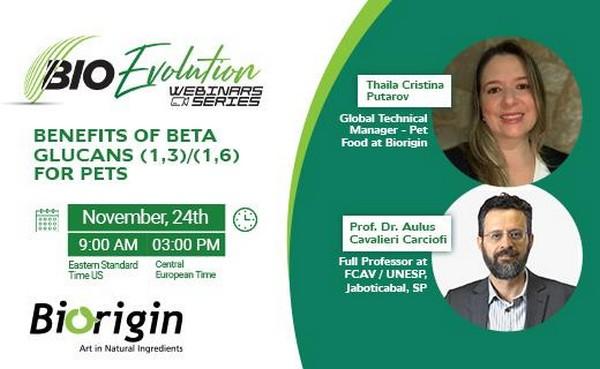 Vitamins
Vitamins
1+ MIN
20/11/2020
Biorigin Promotes a Webinar on the Benefits of Beta-glucans for Pets
Professor Dr. Aulus Cavalieri Carciofi is the company's guest to present the benefits of betaglucan for pet nutrition Continuing its BioEvolution Webinar series program, Biorigin promotes on November 24, at 9:00 AM (Eastern Standard Time US) | 3:00 PM (Central European Time) the webinar entitled: 'Benefits of beta-glucans (1,3)/(1,6) for pets' conducted by Biorigin's Global Technical Manager of Pet Food Thaila Cristina Putarov, and presented by Prof. Dr. Aulus Cavalieri Carciofi, Full Professor at Faculty of Agricultural and Veterinary Sciences (FCAV/UNESP), Jaboticabal Campus. The owners of dogs and cats are increasingly demanding with the care with feeding their pets, and constantly seek food that contributes to improve health and increase longevity. According to Thaila, the interest in the use of nutraceuticals, food supplements that contain bioactive compounds that brings health benefits, has increased in recent years. The webinar will focus on presenting the benefits of beta-glucans. 'Among nutraceuticals, beta-glucans 1.3/1.6 extracted from the yeast cell wall are bioactive molecules with proven performance in supporting the body's natural defenses, favoring glucose and lipid metabolism', adds the technical manager. The webinar is open and those who are interested can register HERE Fuente: All Extruded
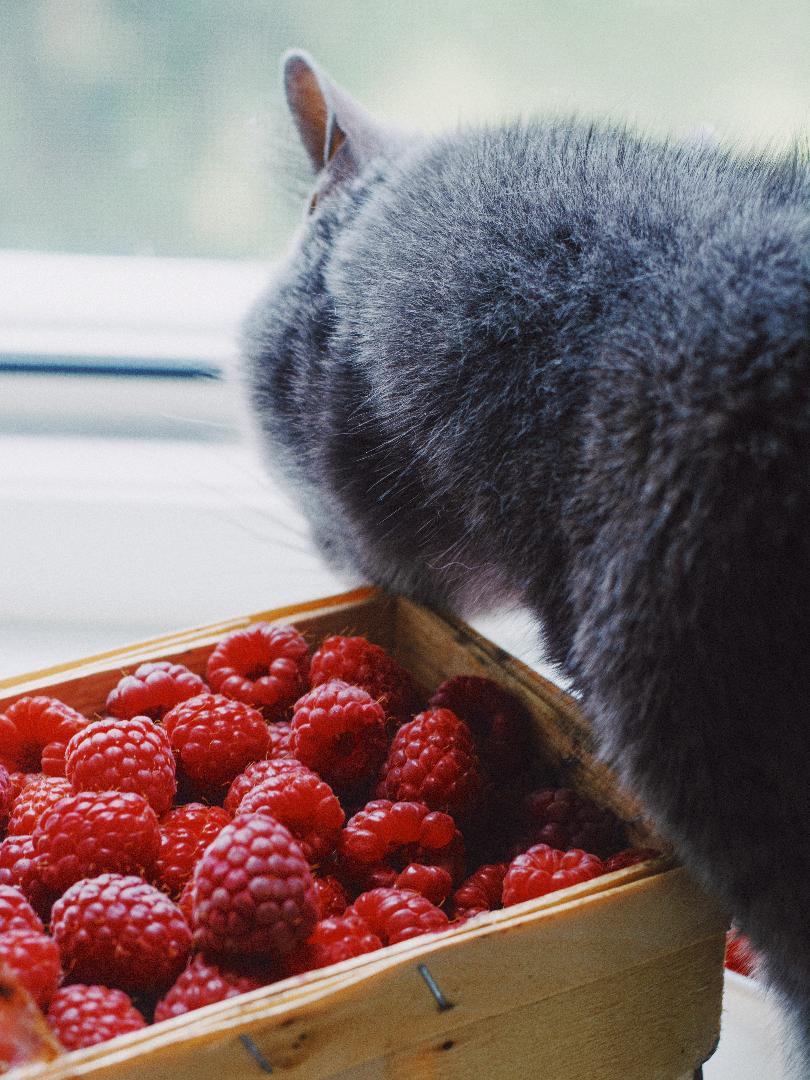 Vegetable Origin
Vegetable Origin
6+ MIN
18/11/2020
Can vegetable protein replace animal protein completely on a Pet Food formula?
'Pet foods with a higher content of plant-based ingredients provide a sustainable, ethical and environmentally friendly option for pet owners,' says Jennifer Adolphe, Nutrition Manager at Petcurean. Yes, studies affirm that it is necessary to look for fewer polluting options for the meat industry, but the question that arises is: does vegetable protein provide the same nutrients? How safe is it to remove meat protein from animals that are essentially carnivores? In this article we deepen into the debate about whether pet food can (or should) be 100% vegetable or not. We will review the different aspects of this debate that, beyond nutritional, it is also moral for each of the future consumers, and we will focus on the cases in which a food based on vegetable protein is recommended or preferred. Nowadays, speaking globally, you can already find foods with formulas 100% of vegetable origin, that is: strictly vegan foods, which do not contain any type of ingredient of animal origin. There are also some intermediates, which can be considered "vegetarian", in the sense that most of their ingredients are of plant origin and not animal. Which is the industry challenge? Compared to the manufacture of food for humans, the big problem is that, when it comes to feeding pets, balanced food must be perfectly designed to be "complete and balanced." All the nutrients, vitamins and proteins that a dog or cat needs have to be in the food (and in the right proportions). What happens with humans is that we consume a very varied diet every day, so if a food has a certain nutritional imbalance, we do not even know it because we supply it, in most cases, with the nutrients of another food. Instead, pet owners feed the same food for years, if they are satisfied with it. So if cats and dogs are carnivores, how do we get meat protein out of their diet? Well… yes and no. They are and they are not. Cats are obligated carnivores: they need to consume meat to develop. They can eat other foods, but they do need meat, simply because they cannot efficiently digest all the nutrients in plant matter. In contrast, a scavenger or facultative carnivore, such as dogs, is the animal that consumes meat as its main food, although it could survive only on plant matter. Yes. Survive. Not develop, that is, grow vigorously. Dogs could exist on a properly balanced meatless diet, although most would rather not. Cats, for their part, require meat products in their diet due to their need for taurine and their inability to convert carotene to retinol. Hence the great moral debate arises: A dog could be fed vegetables and grains, but would you be deciding for him (and against his instincts), considering that, most likely, he would choose a piece of meat to a serving of legumes? What are the nutritional requirements of a dog and a cat? Dogs and cats need twenty-two different amino acids to fulfill the functions necessary to develop properly. Of these 22 amino acids, the dog can produce 12, and 10 are nutritionally essential. In the case of the cat, 11 amino acids are essential. This means that we, from the industry, are responsible for providing through food the missing amino acids, such as: • Arginine: stimulates the immune system, induces the release of growth hormone and supports the liver. • Histidine: releases histamines, is associated with pain control, and widens small blood vessels to stimulate the stomach. • Methionine: helps the functions of the gallbladder, prevents fat deposits in the liver and balances the pH of the urinary tract. However, there are certain essential amino acids for dogs and cats that, very often, are not present in plant proteins. Some of them are: arginine, taurine, methionine, lysine and tryptophan. This leads to the conclusion that when considering creating a plant-based formula to meet the demands of this market sector, it is essential to consider the difference between the various amino acid profiles of plant and animal proteins. It is because of these different amino acid profiles that animal protein has historically been considered "complete", due to the fact that vegetable protein (such as grain, corn gluten or soy flour) does not contain all amino acids by themselves (properly proportioned) necessary for the proper development and growth of a dog and / or a cat. Does vegetable protein have any advantages? The digestibility of plant proteins depends on two main factors: their source and the processes by which they are incorporated into pet food. For example, if they are undercooked or overcooked they can lead to digestibility problems, but if they are handled correctly, they can be as valuable and digestible as animal protein. For example, isolated soy protein, hydrolyzed soy, corn gluten and wheat gluten are purified sources of highly digestible plant proteins. Wheat gluten has been shown to be nearly 10% more digestible than beef. This brings us to the main benefit of plant protein: a food based on plant protein is recommended for pets with gastrointestinal problems or diseases. This is mainly because undigested proteins can overstimulate the gastrointestinal immune system, increasing the risk of causing a food intolerance (allergy). Likewise, an undigested protein can also promote the appearance of bacteria that are harmful to the colon and the pet, as a result of the fermentation of these proteins, which brings a strong fecal smell, flatulence and diarrhea. It is proven that humans suffering from liver disorders and susceptible to hepatic encephalopathy (HE) they lean on vegetable or dairy proteins rather than sources of meat protein, as it helps them control symptoms and maintain natural body condition. In correlation, there is evidence that similar nutritional choices for HD dogs were beneficial, given the change in blood ammonia concentration that occurs when leaving a meat protein-based diet and replacing it with plant protein. In the case of pets that suffer from EPI (exocrine pancreatic insufficiency) and skin diseases, a diet based on hydrolyzed soy and rice protein is suggested specifically, since it could significantly improve their clinical condition. The latest discoveries related to animal protein Soy, which is high in protein and has an amino acid composition similar to that of meat, has been found to be more complete than previously thought. Research and studies continue on how to enhance its digestibility. Wheat gluten has been found to be high in crude protein and digestible, which is why it is increasingly included in diets in Europe or the United States. Recently, corn gluten meal was identified as a highly digestible vegetable protein suitable for use in a canine diet. In conclusion The fact that an animal will always prefer a piece of meat to a vegetable or legume is undeniable, both by us, who create and improve the products of the pet food industry, and by the owners themselves. It's their nature. Even thought, more and more owners decide for options with more and more plant ingredients, due to an anti speciesist issue (that is, no animal species are more valuable than another), and sustainable (meat production consumes many natural resources). Because of that, from our sector, we have to be up-to-date regarding trends and new market demands, in order to develop products that satisfy their wishes and, in turn, increase the profitability of both manufacturing companies and companies input suppliers. Tell us your opinion about vegetable protein. Do you think this type of food will be successful? We read you. By: All Pet Food
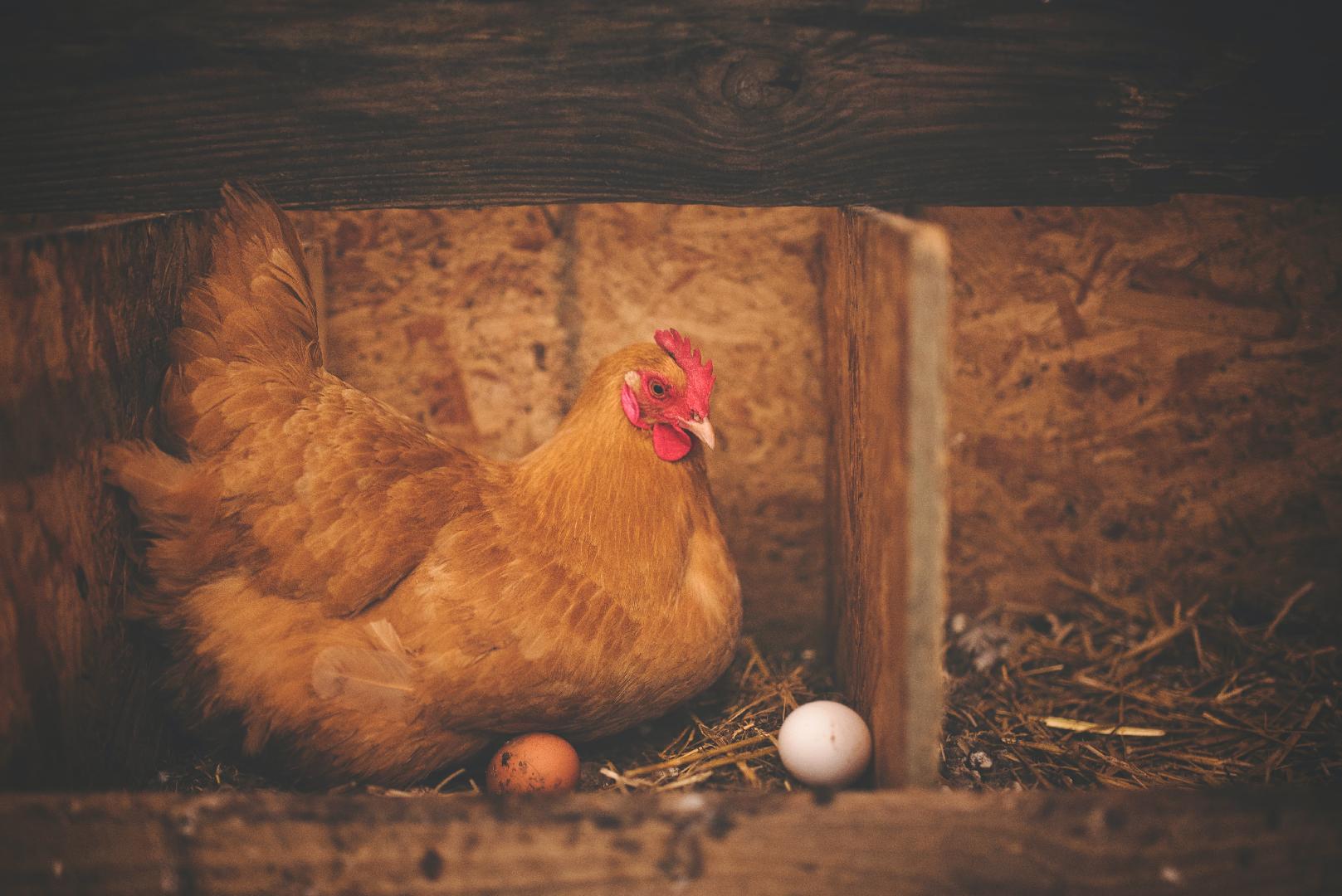 Animal Origin
Animal Origin
4+ MIN
16/11/2020
Why is chlorinated chicken such a controversial ingredient?
In recent years, chlorinated chicken is an ingredient that has reached more than one debate in the pet food industry. In recent times, this term has been heard more frequently, due to Brexit and how it would affect the quality of pet food. In this article we tell you what it is and why it is so contradictory in our industry. First, what does it mean for chicken to be "chlorinated"? The word "chlorinated" refers to the process of washing the bird with an antimicrobial solution of chlorinated water. The purpose of this stage is to eliminate bacteria and other microorganisms that can cause diseases such as Salmonella and Campylobacter. The great confrontation over this practice is between the European Union, which already has it banned, and the United States, which continues to practice it both in food for humans and pets. The European Union awards that allowing this technique is aimed directly at the health and welfare of animals. It states that when chlorinated water has to be used it is because during the life of the birds there were poor hygiene, health and welfare practices. What does this have to do with Brexit? Well, the reality is that, with the departure of the United Kingdom, one of the main suppliers of pet food, from the EU, the member countries are driven to seek new horizons to meet the demand for pet food. In this way, the United States is disqualified and is not a viable option, given that its products do not meet the quality standards of Europe. The truth is that the United States is the world's largest producer of poultry meat, and almost a fifth of what it produces is exported, and its low welfare standards allow it to achieve one of the cheapest productions in the world; However, the European pet food market is one of the highest quality, so they have never negotiated to relax their standards and requirements for pesticides, antibiotics and labeling. So what is the problem with chlorinated chicken? The EFSA has questioned since 1997 the food safety of chicken from the United States due to chlorinated water. Also, Kath Dalmeny (executive director of a British group of food and agricultural control) affirms that; "Adequate food safety relies on clean production methods with high animal welfare, good disease resistance and traceability, and clear labeling guidelines, not just chemical washes at the end of the chain." The debate surrounding this practice focuses on two main issues: 1.Is it effective? Studies conducted by the US university show that bacteria such as listeria and salmonella are active even after washing with chlorinated water. Washing with chlorine simply makes it impossible to detect them in the laboratory, creating the false impression that the bird is free of bacteria. 2.Does it hide animal abuse? If the hygiene and welfare standards of the farms were high and ensured the wholesomeness of future human and pet food, there would be no need to wash it with chlorine, since it would not contain harmful bacteria. From this perspective, the practice would not be necessary unless one seeks to hide a low quality of hygiene and animal welfare in the entire production process, such as cleaning waste and exposure to sunlight. In general, when chlorinated chicken is used is because they have previously been given antibiotics to stop possible infections due to hygiene conditions. Thus, bathing with chlorinated water is a much cheaper process than using hygiene measures throughout the chain. For their part, United States agencies such as the NCN cite several scientific studies that confirm that this practice does nothing more than protect the health of both humans and pets that consume food with chicken remains. They add, they ensure that this substance is present in an insignificant quantity, so it does not modify the taste, texture or color of the final product. And while the FDA regulates the use of this technique, there is still the risk that producers will violate the rules. In cases where chicken contains a high amount of chlorine, it can start to develop carcinogens. And in Latin America, what is the situation? The consumption of chicken in Latin American countries such as Brazil or Argentina even doubles the consumption of European countries. Even so, the European market has potential, and imports of this bird are expected to increase, as long as it meets the requirements. For example, Argentina imports a small quantity of poultry animals, and what is routinely controlled is the absence of pathogenic microorganisms such as: Salmonellas ssp, Escherichia Coli ssp, Coliforms, Enterobacteria, fungi, yeasts, Listeria, etc. In conclusion Beyond the perspective of each country, the truth is that the United States, together with Brazil, continue to be the countries with the most chicken exports. Regarding our industry in particular, the most sensible thing will be to deep in the knowledge that producers have about the ingredients and animals that are used when producing pet food, since, as we well know, chicken is the most widely used in the pet food sector. As we discussed in a previous article when we discussed sustainability in the pet food industry, any change, improvement or ban that is implemented in the human food production chain will consequently affect pet food suppliers, due to the large quantity of bits and pieces that are incorporated into pet food because they are discarded from the human food production chain. Did you know anything about this debate? Tell us your opinion; we read you in the comments. By: All Pet Food
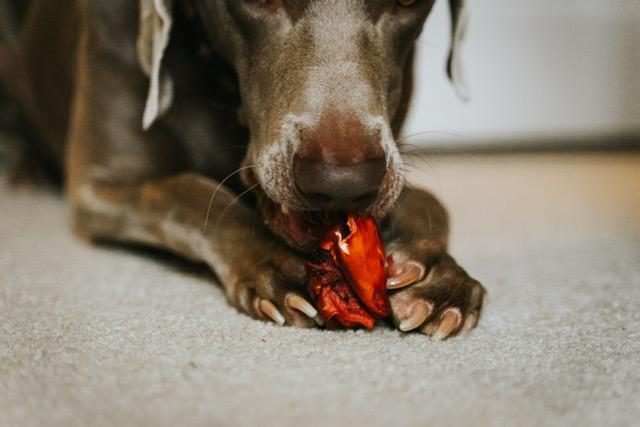 Animal Origin
Animal Origin
4+ MIN
13/11/2020
Pet Food high in animal protein? Challenges and advantages
The Pet Food Industry market is constantly growing and transforming. Consumers' wishes are becoming more and more specific, and as the demand for vegan pet food expands, so does the demand for food with a high content of meat protein. In this article we will talk about what are the challenges to produce and manufacture this type of food, as well as the advantages they have for future consumers: pets. Generally, a pet food is considered to be high in meat or animal protein content when its formula is 30% or more fresh meat. The expanded trend for consumers to opt for increasingly premium pet foods places the responsibility of manufacturers and veterinary nutritionists to seek continuous improvements in ingredients, nutritional quality, and palatability in order to stay within competitive market and be chosen for the quality of their product, beyond packaging or price. So much so that some large producers are already testing innovative formulas that arise from looking for: • Higher quality, incorporating more mechanically boned skeletal muscle and primary organs. • The development of non-traditional formulas, such as grain-free or with a limited quantity. • New shapes for dry food, such as a crouton or bone. • The one that concerns us in this article: an increase in the percentage of fresh meat (frozen, not frozen or dehydrated), of up to 75%. What is the challenge in the production of pet food high in meat protein? Logically, and as in any area of life, when innovating, new problems arise to overcome or solve, and the increase in meat content presents a unique challenge from a manufacturing point of view: extrusion. "High-meat dry food can be produced with a single-screw, mid-cut extruder, as long as the ingredients are used dry." Says Dave Albin of Insta-Pro International. However, the challenge arises when working with raw and wet ingredients, because according to Dave, "the moisture and fat in raw ingredients from animals reduce friction in the extruder barrel, making it difficult (and almost impossible) to reach the necessary cooking temperature'. As well as producers seek to innovate in their formulas, manufacturers of the machinery necessary for that production must to accompany and allow the market to update their offer. To increase the meat content in pet food, a twin screw extruder has a processing advantage (over single screw ones) thanks to its better mixing and kneading ability. The keys to safe innovation and transformation, according to industry experts, include considering: new requirements in formulas, the development of appropriate hardware, effective process control, and concrete and detailed specifications of the final product. What are the benefits of high animal protein feed, worthy of such changes and innovations in the industry? Protein is essential for healthy growth; and it is the main source of energy for an animal. Food high in meat protein is beneficial because: It refers to the natural diet: a grain-free and protein-based feed is the closest thing for a pet, today, to the style of natural animal feeding: the carnivore. In fact, many veterinary nutritionists say that the ideal is to imitate, as much as possible, how they would feed themselves (as their previous generations did), since their digestive systems have changed very little. According to this line, these professionals maintain that dogs and cats should eat food with 60% meat. Helps Weight Loss: overweight pets can achieve healthy weight loss through a high protein (and calorie restricted) diet. Also, in addition to promoting the loss of body fat, it helps maintain lean body mass. On the other hand, a food high in meat protein generates a higher caloric expenditure and a greater feeling of fullness and satisfaction. A study published in the Journal of Nutrition certifies that dogs fed by a diet high in protein and low in carbohydrates perceive a greater loss of body fat and a better maintenance of lean body mass. Supplement their nutritional needs: dogs need 22 amino acids, 12 of which they can produce on their own. There are 10 essential amino acids that it´s necessary to obtain through food, and they are: arginine, histidine, isoleucine, leucine, lysine, methionine, phenylalanine, threonine, tryptophan and valine. All of these are found in the protein of meat. Helps delay or slow down aging: as pets get older, they need to consume more and more protein to maintain healthy body condition. This will prevent the loss of muscle mass, since they will obtain the adequate amino acids for good maintenance. Helps puppies: on the one hand, a puppy dog, for example, needs more protein during its first stage of growth and development. Accordingly, the diet of a pregnant dog should be high in protein, as well as rich in nutrients, fat and calories. Regenerates the muscles of active pets: when an animal exercises or has periods of high activity, its muscles work at a higher speed, that is, they build and break down muscle protein more quickly. The amino acids present in proteins promote muscle growth and recovery; a high protein content provides what is necessary for the reconstruction and replacement of muscle tissues. As the demand for pet food high in meat protein grows steadily, the industry must work to be prepared for new challenges. As Dave Albin states, "High-meat pet foods and treats will continue to expand into both dry and wet products". Therefore, the best way to continue within the competitive circle of supply and demand is to make the best effort to adapt and provide the final consumer with what they want and need. Are you already offering a pet food of this style? By: All Pet Food
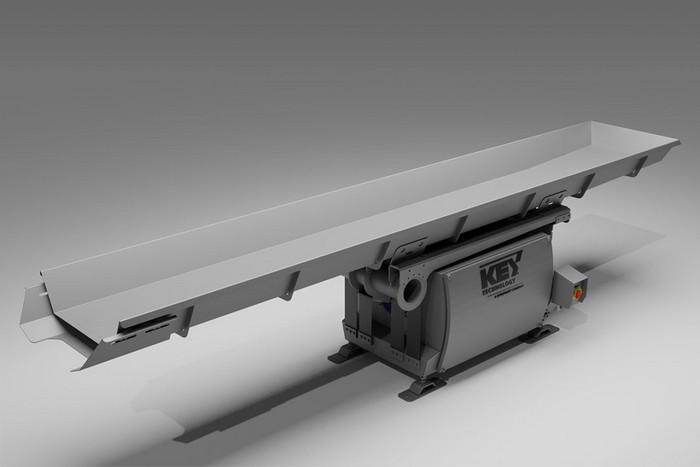 Conveying Systems
Conveying Systems
2+ MIN
12/11/2020
Key Technology’s New Conveyor can reduce Product Damage, Processing Noise
The solution features a patented direct drive and counterbalance system to move high volumes of product gently to reduce product damage and noise. 'Designed for food processors who want gentle handling, our field-proven Zephyr conveyor offers higher throughput, reduced maintenance and a modular design that's more readily customized than other horizontal-motion shakers on the market,' said Jim Ruff, vice president of process systems and integrated solutions at Key Technology. 'We are excited to add this product to Key's portfolio – it enables us to provide the widest range of conveyor types and available options on the market. We're able to supply each customer with the best system for their application and integrate multiple systems into seamless solutions.' Zephyr does not bounce or loft product during conveying, making it ideal for products that are fragile or coated in seasonings or palatants. The system offers reduced noise during operation by up to 75 decibels, minimizes floor vibration, and features a self-cleaning mechanism to reduce product build-up. The system can move products up to 40 feet per minute (12.2 meters). The stainless-steel construction is sanitary, offers equipment longevity and reduces the need for maintenance. It is built with carbon fiber springs coated with food-safe material and uses an electric motor drive system. Zephyr conveyors can be customized to meet individual processor needs. The conveyor bed can reach up to 3.3 feet (1 meter) in width and up to 23 feet (7 meters) in length. The product depth can reach up to 10 inches (254 mm). Conveyor bed options include slide gates for scale feed distribution, a discharge to enhance multi-head weighing, or a bias to spread product when feeding to a downstream system, according to Key Technology. The system can be configured with a stop-start mode and can accommodate varying product flow rates to offer flexibility. Additionally, the location of the drive system allows for seamless integration with other Key Technology equipment, including Iso-Flo, Impulse and other vibratory conveyors made by the company. The system is available in four finishes. The system's rotary polished beds, ground and polished welds meet modern sanitation standards. Zephyr systems work best for frozen bulk food products and dry nuts and cereals, but could also be applicable in the pet food and treat processing space By Pet Food Processing
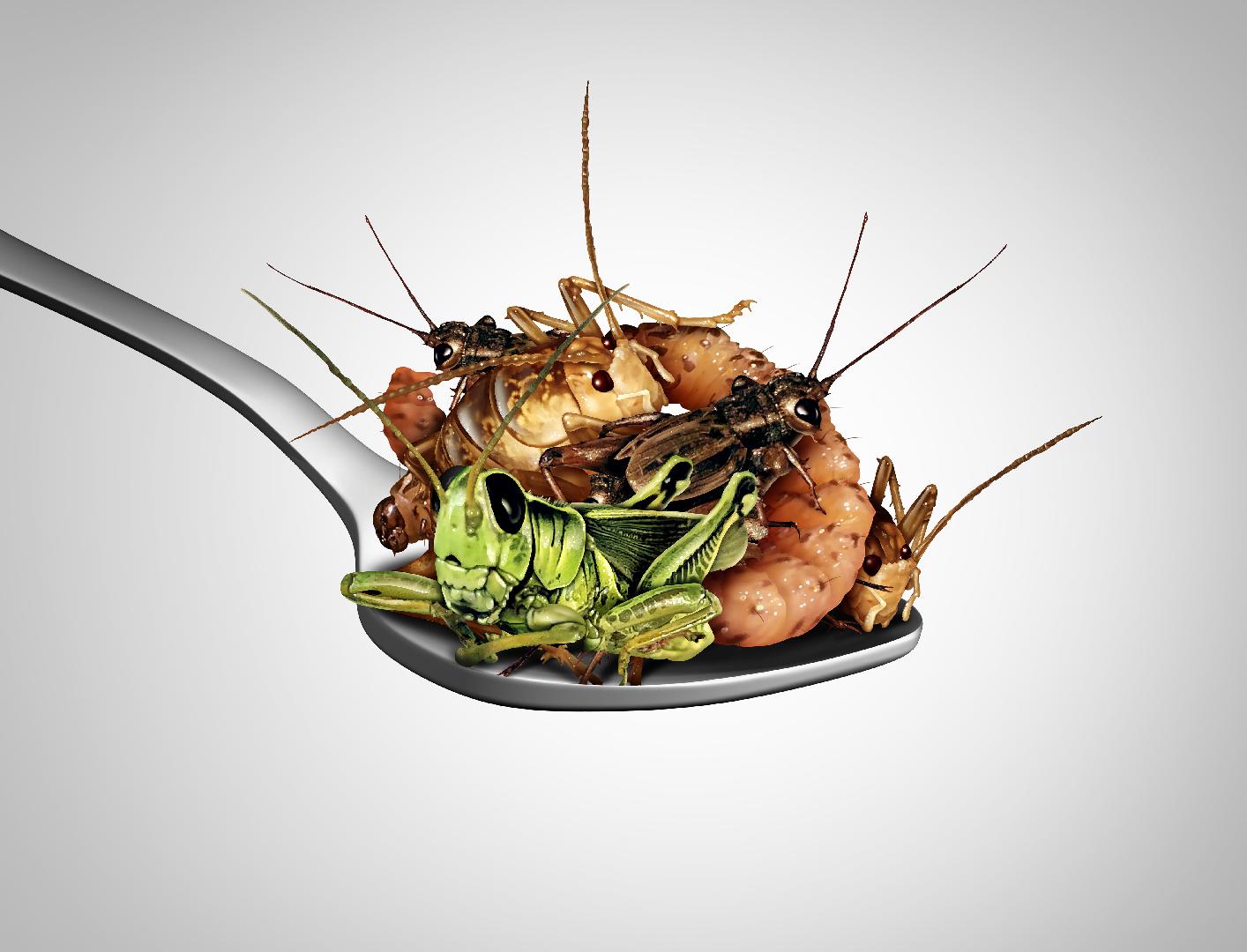 Formulation
Formulation
5+ MIN
10/11/2020
Insect-based pet food?
In one of our recent articles we tell you about how we could reduce the pollution and waste that our industry produces. Now, there is a growing trend that we do not name you and that could positively impact the reduction of waste from the production of pet food: insect-based pet food. In this article we will tell you all about this new trend and we will bring you the examples of companies that are already implementing it. First of all … Would there be a demand for an insect-based pet food? To make any type of investment in machinery, research or innovation, it is necessary to know whether or not what you want to implement will be in great demand in the future. In the case of food for dogs and cats based on insect protein, there is a barrier to overcome: the 'disgust factor'. Eating insects is not culturally normalized in the West, not even for pets. Not to mention the people! However, the truth is that more than once, probably, pet owners saw their companions hunt or catch an insect that was walking in the garden or on the terrace. And it is also true that, surely, someone has been heard shouting 'oh, how disgusting! Leave that". From this point of view, companies and manufacturers that decide to include this ingredient in their food formulas have to take into account informing and educating about the benefits in order to break this stigma. Now, let's see what is beneficial about this practice: Why use insect protein in pet food formulas? The answer is simple: sustainability. Replacing animal meat and protein with insects for pet food contributes positively to the sustainability of the production chain. Why? It is already known that the amount of inputs and resources that are needed for the production of meat is very high, taking into account from the food and fertilizers for the animals to the packaging and transport to the sales centers. Conventional industrial agriculture requires large amounts of energy, water and land, and even the welfare of livestock and its polluting effects remain a matter of debate to this day. It is estimated that between 12% and 20% of the meat produced worldwide is destined to feed domestic animals. Protix, the Dutch company that claims to have the largest insect farm in the world, estimates that, compared to beef, insect-based foods use 2% of land space and 4% of water for every kilogram of protein. Are these numbers not sustainable enough? As if that's not enough, insects don't need fertilizers or pesticides, and they produce very little methane and ammonia emissions. The founder of Protix states: 'All over the world we are contributing to the warming of the atmosphere and consuming the Earth. The problem is that we have to continue feeding a population that needs protein. You have to do something different, and insects are part of the solution'. In the same vein, the president of the British Association of Veterinarians, stated: 'There is a really exciting future for the use of insect proteins in companion animals. It is essential to find sources of food that do not deplete the soil or water, or drive climate change'. In addition, three other benefits emerge from this main benefit: • Greater profitability: by needing fewer inputs and resources for its production, costs are reduced and profitability could grow. • Increase in demand: this characteristic could positively impact attracting more millennial buyers, the age range with the most pet owners today; these types of owners are even willing to pay more for a better quality or more sustainable product. This group also includes the majority of vegetarian cat owners: since felines do need to obtain taurine from meat protein, they may prefer to give their pets food based on insects rather than with beef, chicken, or fish. • Nutritional quality: besides being a good source of protein, insects contain fats, fatty acids, minerals and vitamins. The amount of these nutrients varies between different species. According to the FAO, the nutritional value of insects does not differ from the nutritional value of other meat sources such as chicken, cow, pork and fish. And in the world, how is the situation? For now, in the United States, the largest pet food market, insect protein is not yet allowed in daily pet food. Some insect-based treats have been released, but no more than that. On the other hand, the European Union a few years ago allowed the use of insect proteins in pet food. Initially, this encouraged the development of the odd dog food here with the ingredient. In the UK, for example, food with up to 40% insect protein can already be seen on shelves. What happens is that still, due to lack of mass production and infrastructure, this type of food is up to 4 times more expensive than an average food. Insect protein in pet food is also making its way onto the market in Germany, France and Italy. Companies that are dabbling in insect protein We bring you the example of some companies that are already innovating in this trend, to inspire you and see that change is possible, in case you want to implement it in your company. • Ynsect is an insect farming company born in 2011 that uses, unlike many others, mealworms as its main "livestock". Their insect-based pet food is suitable for dogs, cats, rodents, birds, and reptiles. The product comes in powder and oil form (replacing less sustainable oils like palm oil). It also produces a natural fertilizer. • AgriProtein has its main farm in Cape Town, South Africa. It uses black soldier flies and their larvae to turn organic food waste into meal for fish, poultry, pigs and pet food. • Protix Biosystems, the company founded in 2009 that we already named you, is the creator of Its ProteinX, one of the main ingredients of a new premium dog food that is marketed in the United Kingdom. He also developed a moist food beneficial for intestinal health. • Founded in 2015, Wilder & Harrier of Montreal is developing a line of insect-based dog food and treats made from black soldier flies, crickets and mealworms. • Yora Pet Foods offers a kibble made from insect protein (black soldier fly), oats, potatoes and vegetables. In conclusion As much as owners humanize pets, cats and dogs will continue to chase and eat all kinds of insects that come their way. If we want to go back to nature and feed pets "just as they would in nature," then what would be more appropriate than insects? Do you think it will be implemented in the market? We read you. Tell us your opinion about this new trend. By: All Pet Food
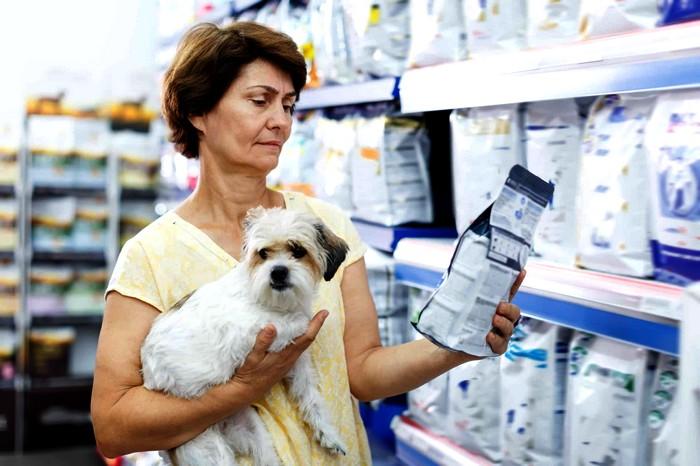 Packaging
Packaging
3+ MIN
06/11/2020
How to Read a Pet Food Label
Pet food labels are full of information related to the product's nutrition, ingredients, the life stage of the pet it's formulated for, and more. In fact, a pet food label is regulated under both state and federal law, and some of this information helps regulators as they review label claims and register products at the state level. However, there are still plenty of details that pet owners can review as they determine what food to provide for their cat or dog. But what does all of this information mean and how can it help inform shoppers? Let's break it down: Complete and Balanced Complete and Balanced pet food includes the more than 40 nutrients identified by veterinary researchers as essential to pet health. The Association of American Feed Control Officials (AAFCO) sets standards for the levels of nutrients that need to be in pet food and how it is shown on the label. A pet food labeled as 'complete and balanced' means that it provides those nutrients at the proper levels. Life Stage Pet food may be formulated for different Life Stages, from puppies and kittens, who need additional energy to help fuel their development, to adult cats and dogs, and all life stages. As previously mentioned, 'complete and balanced' means total nutrition for a specific life stage. The nutritional needs of a growing puppy or kitten are different than the needs of a pregnant, or adult dog or cat. For example, the nutrient profiles for puppies and kittens include a higher protein and fat minimum. Look for the intended life stage on the package, which can typically be found on the front of the package or in the Nutritional Adequacy Statement. Many foods are labeled for 'All Life Stages' which means it meets all of the nutrient requirements for both growth & reproduction and adult maintenance as listed in the AAFCO Nutrient Profiles. Nutritional Adequacy Statement Pet food labels will have a Nutritional Adequacy Statement, also called a 'nutrition claim.' This verifies whether a pet food is formulated to provide complete and balanced nutrition (as defined by AAFCO), if so, for what life stage, and how that determination was made. This claim can be reviewed by the state regulators who register a pet food product in their state. It's important to note that some pet food products, such as types of food toppers and mix-in products, may not be necessary to maintain pet health, nor are they meant to replace a pet food providing complete and balanced nutrition. Regardless, these types of foods must meet FDA requirements for safety and their label will also include a statement that it's intended to supplement a diet. Guaranteed Analysis The Guaranteed Analysis (GA) reflects the minimum or maximum amounts of certain nutrients. The GA provides product information to regulators who review each label for compliance with nutrient requirements and voluntary label claims. The GA also provides information that can help inform consumers on the levels of at least four nutrients: protein, fat, fiber and moisture. Additional nutrients must be included in the GA if a product label makes a claim that mentions a specific nutrient, such as calcium for strong teeth and bones. Remember, when comparing dry vs. wet pet food labels, the Guaranteed Analysis may look quite different due to the food's moisture content. Learn more about Guaranteed Analysis here, including how it's calculated. Ingredients and Other Options Pet food makers choose from a range of ingredients when formulating a recipe with the nutrition listed above. Ingredients may be used for their nutritional content, digestibility, tastiness to the pet, and many other considerations. All ingredients used must be listed on the product label, including special vitamins or minerals, and listed using technical names as defined by regulators. For example, shoppers may see 'chemical sounding' names such as Thiamine mononitrate or Pyridoxine hydrochloride, which are commonly known as Vitamins B1 and B6. Pet owners have a variety of options available to them, such as dry, wet, organic, limited ingredient, and more! Click through to read more as we help explain some of these options. by Pet Food Institute
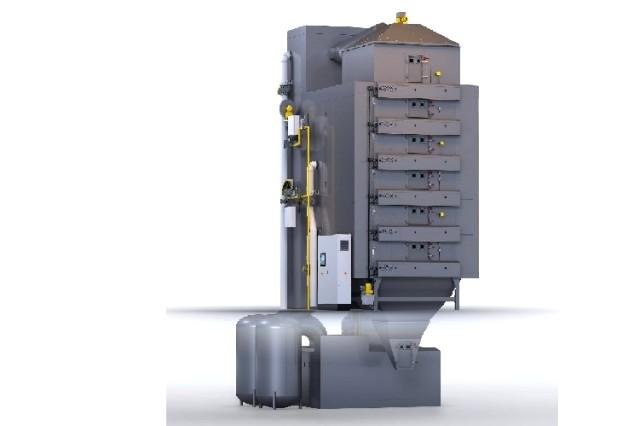 Drying
Drying
2+ MIN
04/11/2020
Geelen Counterflow begin Production of Electric Dryers for China
Geelen Counterflow has started the engineering and manufacturing of a second electric dryer for extruded petfood, to be installed in 2021 in China. High temperature industrial heat pumps will supply 2400kW of heat to a seven-deck counterflow dryer and 65 percent of that heat will be recovered and re-used in the dryer. The first electric dryer is being assembled in South Korea for another customer and will be commissioned in 2021. Both electric dryers will initially be commissioned with gas burners. This allows installation and commissioning according to standard operating procedure. A few months later, once the dryers are up and running, the Counterflow Recovery Units (CRU) will be commissioned to start recovering energy through condensation of the warm moist air coming out of the dryer. The warm water coming from this CRU will be boosted in temperature by high temperature industrial heat pumps which will supply 100 percent of the heat for the dryer, so then the gas burners can be switched off or go in stand-by mode. The net energy consumption of the dryer will then be up to 65 percent lower and consist of electricity only. If the electricity is from renewable sources, the direct and indirect CO2 emissions of the dryer can be eliminated. Since dryers are by far the biggest consumers of gas in the plant, this typically reduces the CO2 footprint of the entire production line by more than 50 percent. It is no coincidence that Geelen's first electric dryers will be installed in the petfood industry. The market leaders in this industry have short term ambitious targets for net zero greenhouse gas emissions in order to comply with the Paris climate agreement. Electrification through heat pumps is the only technology that enables not only the elimination of CO2 emissions from dryers but also a big improvement in energy efficiency. by All Extruded
 Vitamins
Vitamins
2+ MIN
29/10/2020
Breakthrough for pet health and sustainability - Veramaris announces a richer, sustainable algae Omega-3 for pets
Veramaris® Pets, a new source of Omega-3 for pet food which provides twice as much EPA & DHA Omega-3 fatty acids compared to fish oil, has been launched by biotech Veramaris. It's the first of its kind in pet food; a natural, rich and sustainable alternative to fish oil to help pets enjoy long, healthy and happy lives. Veramaris' natural marine algal oil is made from microalgae, which is particularly rich in essential EPA & DHA Omega-3. Just a little drop of Omega-3 is what pets need every day. Veramaris provides pet food companies with a stable and sustainable way to enrich their products with nature's richest Omega-3 and give pets the essential nutrition they need. This latest development for Veramaris follows an extremely successful first 12 months establishing itself in the aquaculture market. Now, the company is expanding its portfolio and its pioneering algal oil has been expertly refined to optimise the taste for pets. Veramaris Pets beats Fish Oil on taste in tests where both oils were used as coating for dry dog and cat food. Traditionally, Omega-3 has come from fish oil but demand is outstripping supply, leading to unstable supply conditions and increased risks of overfishing. Veramaris' algal oil expands the world's access to Omega-3 and reduces dependence on wild catch fish. Every 1kg of our natural algal oil replaces 60kg of wild catch fish otherwise used for fish oil in pet food formulations. As well as coming from a guaranteed sustainable and natural source, pet food manufacturers will receive a consistent and reliable supply of algal oil. Invariably, Veramaris algal oil offers an EPA & DHA concentration exceeding 50% and is free from any ocean-borne contaminants. Karim Kurmaly, CEO of Veramaris, said: 'This is an important chapter in the story of our young company. I am delighted that our dedicated team has been able to take Veramaris Pets to the pet food market so soon. Just a little drop of this high-quality product will make a big difference to the health of companion animals, which is good news for 'pet parents' every day and everywhere. They can also be reassured in the knowledge that while improving their pet's health they are also contributing to healthy oceans.' To find out more about Veramaris Pets natural marine algal oil, visit: pets.veramaris.com Source: Veramaris
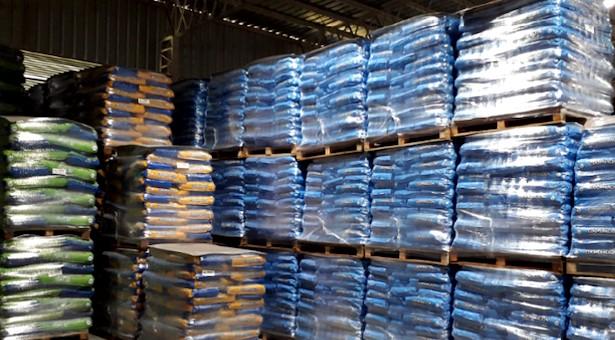 Packaging
Packaging
2+ MIN
27/10/2020
Full line Bagging and Palletizing Solution that Fulfills Future Needs
ACA, one of Argentina's main Pet food Manufacturers, decided to install new technology in their production line, as the old manual bagging system had become a bottleneck in the production line. The company has a wide variety of extruded products with kibble sizes ranging from 2.0 mm diameter up to 16.0 mm diameter x 26 mm long, with an ethereal extract from 4.0% up to 30.0%. The bag-types are numerous as well: Open mouth paper bags and open mouth plastic bags with or without micro-perforation, with 4 seams, pillow type or laminated with metal. The production rate of the new system should be capable of reaching 1.000 bags of 15 kg per hour. Further, it should be easy to switch between different bag sizes, from 8 to 30 kg and between different closure systems such as heat sealing, stitching and sew-through tape closure. ACA investigated the market and visited different installations and finally decided on PAYPER for several reasons: Precise, well-functioning, and accurate machines that would fulfill future needs. PAYPER has representation in Argentina and technical service in Brazil. Together ACA and PAYPER designed the new end-of-line solution, assuring that all the demands were taken into consideration. Requirements to the new End of Line solution: Precision and accuracy The capacity of 1.000 bags/h Ability to work with a variety of kibbles Must handle different bag materials and sizes The system comprises a CSA-105 open-mouth bagging machine and a TOPLOAD palletizer. Mr. Roberto Chunco, Head of ACA's Feed Plant in front of the high capacity automatic palletizier 'The commissioning of the installation was handled in a very professional way with thorough training of the operators. Whenever we have needed PAYPER`s After Sales Service the response has been optimal. Since the installation in May 2017, the bagging line has proved its worth. The goal of manufacturing has been fulfilled, we have obtained the expected savings, and the presentation and the finishing of the bag are of top-quality, ready for retail. ' Mr. Roberto Chunco, Head of the Feed Plant. 'The replacement, in addition to automating allowed us significant cost savings and improvements in the final presentations of our products.' Mr Walter Brignoli, General Manager of the Feed Factory. 'One of the greatest satisfactions is the precision of the weighing and dosing system and the speed with which it is done' Mr José Sejas, End of Line Coordinator, Responsible for operation and maintenance. by Bulk Inside
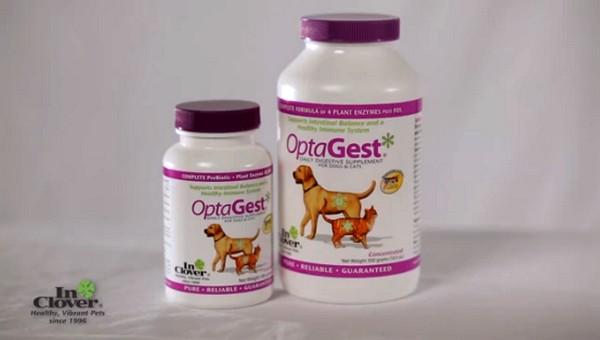 Veterinary
Veterinary
5+ MIN
25/10/2020
Probiotics vs Prebiotics and How They Impact A Pet's Gut Health
In both the human world and the pet world, probiotics and now prebiotics are all the rage. We hear talk about probiotic and prebiotic foods and supplements that will help keep our pets' digestive health in peak condition. When working in pet retail, pet parents will come to you looking for a solution when their pet has an upset tummy. It is in the best interest of you and the pet parents you serve to provide them with a solution that will continuously support the gut health of their pets and not just provide them with a quick fix. So, what is the solution? What will truly support our pet's gut health, probiotics or prebiotics? What are the differences between the two? And how can we sell this to customers? Well, let's take a closer look! What Are Probiotics and Prebiotics? Probiotics are 'good' or 'friendly' bacteria that reside within the gut (intestines) of mammals, including humans, dogs, and cats. Probiotics are living organisms that act like little 'factories' that produce essential nutrients the body needs to function. Each animal has his or her own unique, preferred strain of probiotics. The preferred strain is the one that will be at the highest level when the animal is healthy. If there are three dogs playing in a park, it's unlikely that any of them will have the same preferred strain of probiotics. Probiotic supplements contain living bacteria, generally sourced from soil, cows, goats or sheep in a dairy form like raw kefir. When you give a probiotic supplement to your pet, you are introducing a foreign strain of bacteria into their system. In our fuel example, this is like putting low-grade gasoline into a high-performance car. Sure, it'll get the car moving, but it won't allow the vehicle to perform at its best. Prebiotics are present in fiber-rich foods and are an ideal food source for your pet's native, preferred strain of probiotics. Prebiotics cannot feed (penetrate the cell walls) of unwanted bacteria but will help induce the growth of beneficial bacteria living in an animal's gut. Prebiotic supplements work to quickly shift the balance of beneficial bacteria to a healthy, natural state. Prebiotics will double your pet's friendly bacteria every 20 minutes. So, in just three hours, 100,000 bacteria become over 5 million! This targeted feeding allows the beneficial bacteria to multiply, thrive and line the intestinal walls, while undesirable bacteria starves, has nowhere to attach and flush right through the system. Problems Solved with Prebiotics Within your store, customers won't often come to you specifically looking for a prebiotic but they will come to you with problems that a prebiotic supplement can help. Being able to recognize situations and problems where customers may benefit from a prebiotic supplement is an excellent way to ensure you are providing pet parents with a long term solution. Here are some common issues that could benefit from a prebiotic supplement: Pets with Coprophagia- This is just the technical term for a pet eating their stool. Sometimes the cause of coprophagia is behavioral but the other cause for coprophagia stems from the animal not adequately digesting the nutrients in their food, leaving partially digested food in the feces. In this case, digestive enzymes will allow pets to fully digest all the nutrients in their food and absorb them into the bloodstream. Once the supplement is incorporated into their regimen the stool eating should cease after a few days. Cats with hairballs- Studies show that cat's spend up to half of their waking hours cleaning and grooming themselves. Due to the structure of their tongues, cats tend to ingest a significant amount of fur. Their fur is made from the protein, keratin, which is not easily digestible. Thus the hair clumps into a hairball in the digestive tract that causes discomfort and the inevitable hacking up of the clump. The digestive enzyme protease can break down the protein of the keratin and help cats pass the hair easily through their system. Pets on Antibiotics. Antibiotics are intended to kill harmful bacteria in the pet's system. Unfortunately, they often kill the beneficial microbes as well, including any introduced through a probiotic supplement. However, because prebiotics are not living, they are well-suited to support the digestive tract even during antibiotic use. They can help rebalance a pet's gut health during a round of antibiotics. Transitioning foods. Sometimes when a pet is transitioning foods it can cause an upset stomach and unfortunate accidents. Making a gradual switch can help soothe this issue but sometimes a pet's system may be a bit more sensitive so a digestive aid can really help the transitioning process. When customers come in looking to switch their pet's food this can be a great opportunity to sell a digestive aid supplement. Get Social Selling the Solution So, now that you've learned the difference between probiotics and prebiotics, the problems that benefit from prebiotics, and the solution you can offer pet parents and their pets let's talk about how you can promote it in your independent pet retail store. It is easy to sell this supplement on a case by case basis once a customer comes to you with one of those above-mentioned problems, but how can you get the word out in a broader way? I encourage you to get social with it. Post on social media about what you offer so customers know they can come to you when their pet has tummy troubles. Whether you are sharing the product selection you have to support pets' digestive health or informing pet parents about a promo on said products, a social post is an easy way to disseminate this information to your customers Take the social aspect a step further and host an ice cream social with free ice cream from The Bear and The Rat. InClover partners with The Bear and The Rat so every cup of their frozen goat's milk yogurt comes with a complete serving of Optagest. Not only is this a fun frozen treat but it's also an easy way to incorporate a prebiotic supplement into a pet's diet. No Guts, No Glory Now that you have learned all this wonderful information about probiotics and prebiotics it is time to start sharing this knowledge with your customers. Finding a long term solution for the messy problems tummy troubles cause will keep pets happy and create loyal customers for your business. Solution-based selling with supplements is a great way to help boost your sales while providing the best for pets in your community so get started today! by Rebecca Rose - inClover Research
 Trends
Trends
3+ MIN
22/10/2020
Global Pet Wearables Market – A Market with Great Potential
High-tech solutions and devices in answer to pet parents' health and safety concerns are set to grow the pet wearables market four-fold. The market drivers As pet parents' concerns about their pets' health and safety increase, they are spending more and more on identification and tracking devices. At the same time, new technologies are enabling innovative and radical ways of tracking pets and communicating with them using owners' laptops, smartphones or tablets. It is expected that the wearables market will be subject to significant growth the coming years, growing from its current market, valued at over $3 billion (€2 billion) in 2019 to $12 billion (€10 billion) by 2026, according to a recently published research report by Global Market Insights, Inc. IoT for pet health and safety With the implementation of advanced technologies like IoT, GPS-based trackers, and AI, pet wearable devices enable owners to track their pets' health data, including data on their eating habits, respiratory rhythm, and sleeping patterns. Smart vests Looking at opportunities within product segments, the smart vests product category is expected to show higher demand over the coming years. Smart vests are fitted with hidden sensors and video cameras, to make sure that the pet is secure. The technology is capable of live streaming videos when the dog starts barking. This particular function has also led to the adoption of these devices in stray dogs for the purpose of safety and security. Citing an example, back in 2017, stray dogs in Thailand were equipped with smart vests in order to safeguard the streets and the dogs, by noticing unfriendly strangers and other such dangers. Also, in the identification and tracking market sector, there is expected to be significant growth in demand. Such growth can be attributed to the higher number of lost pets. According to Pet Found by Internet, approximately two million pets go missing worldwide every year. This has boosted the adoption of tracking technology in advanced devices. The addition of RFID technology in pet wearable devices is enhanced by inserting a microchip just under the skin of pets. Commercial end-use segment The commercial end-use segment in the pet wearables market is projected to fuel more demand for pet wearables owing to the development of modern farming. These devices are used for tracking, as well as monitoring livestock, in order to identify health-related issues at an early stage. Latin America From a regional perspective, pet owners across Latin America are increasingly concerned regarding the security and safety of their pets. This will further grow the demand for wearables, especially those that feature GPS tracking, as well as live positioning functionalities. In fact, the rise in the numbers of missing pets in the region has grown pet safety awareness. At the same time, stricter safety regulations are being imposed. For example, Peru has launched initiatives, including chip placement for lost pet search, as well as a special registry for dogs. Such initiatives have further spurred the adoption of pet wearable devices throughout Latin America, especially in Argentina and Peru. Who's in? It is safe to say that the integration of advanced technologies and rising concerns regarding pet health and safety are likely to offer a varied range of growth opportunities for pet wearables market players. The competitive landscape of the pet wearables market includes companies like Whistle Labs, Inc., DeLaval, Inc., Tagg, FitBark, IceRobotics, Invisible Fence, Otto Petcare, Pet Vu, Inc., Dropcam (Nest), Motorola, Garmin, Ridogulous Labs, Nedap, PetPace, i4c Innovations, and Loc8tor among many others. by Pets International
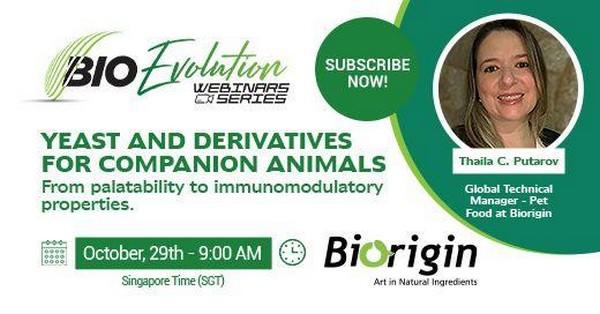 Minerals
Minerals
2+ MIN
20/10/2020
Yeast and Derivatives for Companion Animals: From Palatability to Immunomodulatory Properties
Continuing its program of BioEvolution Webinar Series, Biorigin promotes on October 29 th at 9 am (Singapore time – SGT) the webinar 'Yeast and derivatives for companion animals: From palatability to immunomodulatory properties' presented by Thaila Cristina Putarov, Biorigin Global Technical Manager Pet food, a specialist in companion animal health and nutrition. Yeast and its derivatives products are well known for their benefits in animal nutrition and are mainly used to help balance the intestinal microflora and help stimulate the host's natural defenses, besides the effects on palatability of pet food. 'Exploring and understanding the world of yeast and how these ingredients could be applied to pet food to reach the right objectives in a formulation are the mainly goals of this webinar', complements Mrs. Putarov. The webinar is free of charge and the registration is open on the link: https://gonatural.biorigin.net/webinar-pet-asia About Thaila Putarov Animal scientist with focus on companion animal nutrition and pet food processing. Her masters and PhD degrees were taken on companion animal health and nutrition and her postdoctorate training was based on the evaluation of pet food processing. From 2014 to 2020, Thaila was the coordinator of a center of research in companion animal nutrition. Since last July she is the technical manager for pet food at Biorigin. About Biorigin Biorigin is a Brazilian company, founded in 2003, which mobilizes knowledge and technology to, using biotechnological processes, develop innovative solutions in 100% natural ingredients for the animals' health and well-being. Its portfolio is composed of 100% safe ingredients, assured by the total traceability of the vertically integrated production process, in addition to the quality assured by certifications FSSC 22000, ISO 22000, ISO 14001, GMP+ (Feed Safety Assurance), Kosher (food produced according to Jewish norms) and Halal (food produced according to Islamic requirements). It is the first company in its segment certified by The Bonsucro Chain of Custody for yeast extracts and derivatives produced from fermentable sugar and sugarcane yeast cream, as well as Ecovadis gold rating and Smeta audit showing the Biorigin's commitment to social, environmental, and economic practices through sustainable supplying. www.biorigin.net by All Extruded
 Manufacturing Process
Manufacturing Process
2+ MIN
19/10/2020
Schenck Process to Acquire Baker Perkins
Schenck Process Group (SPG) has reached an agreement to acquire Baker Perkins, a leading global supplier of food processing equipment and aftermarket services for the bakery, confectionery, biscuit, cookie and cracker, breakfast cereal and pet food end-markets. Headquartered in Peterborough, United Kingdom, Baker Perkins serves a diverse & growing mix of customers across the food industry globally.
This acquisition is a continuation of SPG's strategic focus to further extend its global offering for the food end-markets. It will significantly strengthen European capabilities in the food processing and equipment sector, broaden our product offering in the Americas and provide opportunities for growth across the Asia Pacific region. We will build upon the knowledge, experience and customer relationships of the Baker Perkins team to support future growth, whilst remaining fully committed to existing facilities in Peterborough and Grand Rapids, Michigan.
Upon completion, the business will continue to be run by the existing managing directors as part of the SPG regional business structure. The transaction is expected to close in Q4 2020.
Keith Cochrane, CEO of SPG, said:
I am delighted to see Baker Perkins join us. This is a long-established business with a reputation for excellent products and customer service, with a similar business model to our own. It will complement and extend our existing product offering to the food end-market, which is a key strategic focus, providing good opportunities for future growth, operating efficiency and further value creation for all stakeholders.
Mr Dan Bassett, MD Baker Perkins UK, commented:
We have been looking for a long-term partner prepared to invest in the company and continue its development for many years to come. We can relate to the SPG culture that encourages local autonomy and entrepreneurship, which fits well with our independent mind-set. Already we can see significant opportunities for growth, and I am excited at the prospect of working together.
Mr Dan Smith, MD Baker Perkins US, added:
Schenck Process already has a significant footprint in the US market, and we can see major opportunities in the combination of our expertise and product range.
by All Extruded
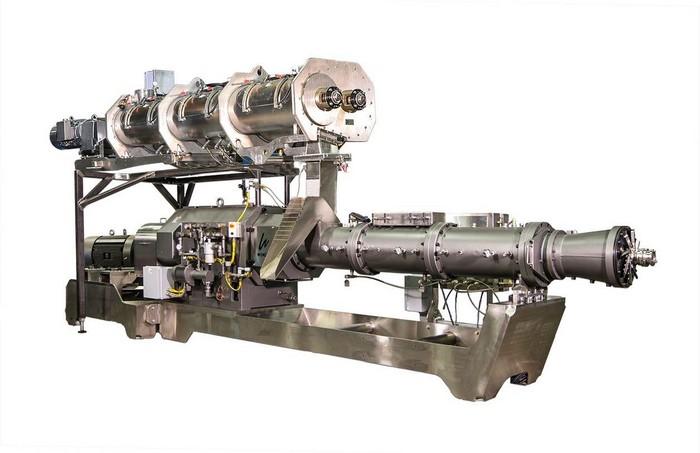 Extrusion
Extrusion
1+ MIN
19/10/2020
Magnum ST Extruder by Wenger Manufacturing
The Magnum ST Series by Wenger Manufacturing redefines versatility for smaller extruders, with no loss of capacity. The ability to use higher Specific Mechanical Energy (SME) settings to take extruded products to the next level makes this solution especially innovative.
Wenger's extruder boasts speeds of up to 1,200rpm and power levels to 165kW hr/t SME at volumetric capacity. Benefits of the Magnum ST Extruder include potential for lower bulk density, higher absorbency levels of liquid coating, smaller cell structure, enhancement of textural properties and higher cook levels.
by All Extruded
 Packaging
Packaging
2+ MIN
15/10/2020
European Packaging Supplier Opens New Technical Center in Germany
Coveris opens new technical center for flexible packaging solutions Coveris, a European flexible packaging solutions provider, announced July 2 the opening of its new Pack Innovation Centre in Halle, Germany. The company aims to innovate, educate and validate its flexible packaging solutions at the new technical center. The facility, which spans more than 4,300 square feet, features the company's state-of-the-art packaging equipment, including a thermoformer, tray-sealer and its form-fill-seal systems applicable for a variety of industries, including pet food and treats. 'The Pack Innovation Centre is a perfect reflection of our commitment to the world of packaging,' said Jakob A. Mosser, chief executive officer of Coveris. 'The centre has been designed to add value through all steps of packaging development, from raw material selection to a circular economy logic. 'In addition, it brings great value to our customers as they can conduct trials on original, industrial packaging machines without blocking their own production,' Mosser continued. 'It gives us an exciting opportunity to join forces with our customers and work with them on designing the packaging of the future.' Cross-functional training sessions, workshops and product trials will also be conducted at the Pack Innovation Centre. The technical center complements Coveris's Pack Positive Centre in Leeds, United Kingdom, which was established in March 2019 to serve a similar purpose of product development, equipment training and education, with an emphasis on packaging sustainability. Coveris offers a variety of premade flexible pouches, bags and films, as well as roll stock materials, for pet food and treat packaging applications. The Vienna-based company operates 26 production facilities across Europe. By Jordan Tyler Source: Coveris
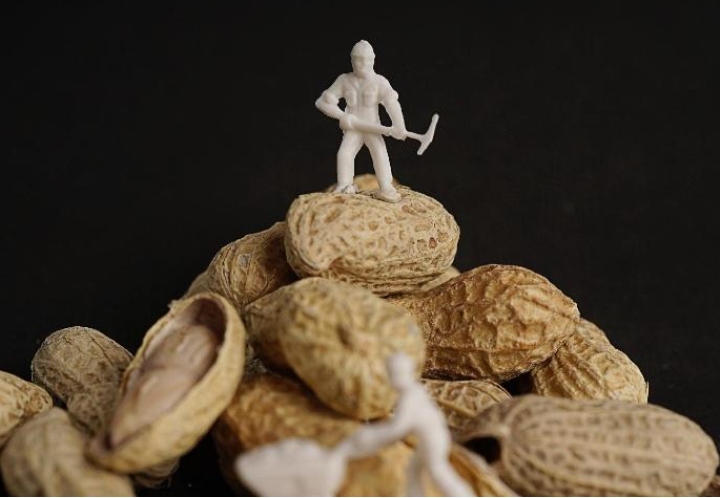 Home
Home
4+ MIN
12/10/2020
Peanuts in pet food formulas: is it good or bad?
Peanuts are one of many ingredients that have been under scrutiny and analysis in the Pet Food Industry. In this article we discuss the different questions that are raised about whether this ingredient is good or bad for pets.
Peanuts, good or bad?
It is one of the favorite snacks of humans around the world. Therefore, it is to be expected that animals like it too, right?
The ingredient itself is good and pet friendly; Let's analyze its main nutrients to know its benefits for animals:
∙ Vitamin E: It is a fat soluble nutrient essential for an animal to develop strong muscles and have a healthy circulatory and immune system. It is also an antioxidant, so it helps protect cells from free radical molecules, a group of atoms with oxygen and free electrons that can damage cell membranes and an animal's DNA.
The main benefits of vitamin E for pets are:
Shiny Coat: Vitamin E helps maintain healthy, shiny skin and coat (it's in all pet shampoo formulas for a reason!).
Reinforced immune system: the cold can dry out a pet's skin and compromise the immune system. Vitamin E is good for fighting the cold.
Increased Fertility: According to a study by Reseachgate, a vitamin E boost for at least 60 days can improve fertility, especially in males.
Vision improvement: Wilfrid Shute, a researcher, discovered, after an experiment, that taking vitamin E helps improve vision and reduces cataracts.
Improved Muscle Function: Vitamin E prevents muscular dystrophy and strengthens muscle generation.
Improves cardiovascular health: a study found that this vitamin slows down the onset of cardiovascular diseases such as dilated cardiomyopathy.
∙ Vitamin B6: has a fundamental role in the production of proteins, hormones and neurotransmitters. Felines need a higher amount of vitamin B6 than dogs.
Its main benefits are:
Maintains the balance of sodium and potassium.
Regulates the distribution of water in the body.
Participates in the absorption of fats and proteins.
It promotes the production of red blood cells.
Participates in the synthesis of DNA and RNA.
Absorb vitamin B12.
It is involved in the formation of antibodies and the functioning of the immune system.
It promotes normal brain function.
∙ Niacin: Niacin or vitamin B3 is beneficial for the general health and well-being of animals.
Its main benefits are:
Effective Metabolism - Niacin helps animals break down fatty acids. Its main function is to convert fats and carbohydrates into sources of energy. It also contributes to having a healthy and shiny coat.
Cognitive function: mental capacity and its development depend, in large part, on niacin, and it will be beneficial for improving memory and training.
Hormone synthesis: Niacin is important for hormonal secretion, and it promotes optimal kidney function.
A healthy digestive tract: Vitamin B3 controls the production of stomach acids and bile in pets, which aid in the digestion of food and destroy harmful bacteria in the digestive tract.
Why was peanuts once considered harmful to pets?
Xylitol. That is the answer.
We live in the information age, but so much content and voices also make it misinformed.
The same happened with peanuts. Xylitol is a polyol or sugar alcohol that is found naturally in some foods like lettuce and corn. It is generally used as a substitute for sugar.
What happens with this ingredient, as with almost all sugars or derivatives, is that it is harmful to pets.
Xylitol causes in some animals, such as dogs, for example, a rapid release of insulin, thus causing a rapid drop in blood sugar levels (hypoglycemia).
This leads, depending on the amount ingested, into intoxication of the animal, and can cause:
• Vomiting
• Muscular weakness
• Difficulty walking or standing
• Lethargy
• Tremors
• Seizures
And even, in the worst cases, a coma.
What does xylitol have to do with peanuts and pets?
The answer is plain and simple: some peanut butter (or paste) formulas contain xylitol to sweeten the flavor. Since xylitol is not bad for humans, there is no problem.
The problem arose when someone gave their pet peanut paste made for humans, which unfortunately got intoxicated. This led to the rumor that peanuts are bad for animals. And although there may be cases in which, for example, it generates allergic reactions and is not suitable for consumption by an animal, in general, peanuts (natural) are beneficial for domestic animals.
To include peanuts in snacks or pet food, we must pay attention to:
∙ Know the supplier: it is best to use peanuts without salt, skin, shell, and / or other added ingredients. You have to pay special attention because, in some cases, an artificial sweetener is added, and these chemicals are not suitable for the digestive system of, for example, cats and dogs.
∙ Report possible allergic reactions: it is very important to notify on the packaging of a snack or cat food the possible allergic reactions that a not so 'common' ingredient in the formula may cause. In dogs, for example, a peanut allergy can become severe, causing coughing, sneezing, hives, and swelling in the facial area. It is always better to report more than less!
∙ Corroborate the appropriate amount: when evaluating the incorporation of a new ingredient, it is essential to carry out the pertinent studies to find the most suitable formula for future animals consuming these sweets or snacks. In this case, peanuts are high in fat, so if not dosed correctly it can even cause pancreatitis.
In conclusion
Peanuts are good and healthy for pets, so it can become an innovative option to expand the range of snack and snack options. And while it is not recommended to add this ingredient to the formula of a daily food, due to its amount of natural fats, it can be used to create an irresistible snack or treat for pets on the market.
What's your opinion on peanuts for pets? We are interested in knowing you, tell us in a comment
Source: All Pet Food
 Market Information
Market Information
2+ MIN
08/10/2020
AFIA Invites Students to Present at Pet Food Conference
The American Feed Industry Association is looking for outstanding students to present their research or subject matter reviews at the upcoming AFIA Pet Food Conference. Up to three graduate students will be invited to present their work as speakers during the conference and up to eight undergraduates or graduate students will be invited to present posters.
The selected students will have the opportunity to present their research to roughly 300 conference attendees, including representatives from all major pet food manufacturers and professional roles within their companies. They will also receive a travel stipend to attend the conference as well as a certificate acknowledging selection to the program.
The daylong conference will take place on Jan. 26, 2021, in conjunction with the International Production & Processing Expo in Atlanta, Ga.
Graduate Paper – Deadline for Submissions: Nov. 9, 2020
The AFIA Pet Food Committee will select three outstanding graduate students or postdoctorate students conducting research in the areas of pet nutrition, pet food quality, the human-animal bond, pet food marketing or other pet food-related fields to present at AFIA's Pet Food Conference. They will be selected based on the research's relevance to the pet food industry, quality of the written submission and recommendations from the student's academic advisor. The submitted papers can either be a presentation of original research or an original compilation of information of current or emerging interest to the pet food industry. Graduate students who are not chosen as speakers will be invited to present their work as a poster.
Click here for full submission guidelines.
Undergraduate Poster Opportunity – Deadline for Submissions: Nov. 16, 2020
The AFIA Pet Food Committee will select up to eight outstanding undergraduate students considering careers in pet nutrition, pet food quality, pet food safety, the human-animal bond, pet food marketing or other pet food-related field to present their research or subject matter reviews in a poster session to be held at the AFIA Pet Food Conference. The committee will select the students based on their chosen topic's relevance to the pet food industry, quality of the written submission and recommendation from the student's academic advisor. The posters can either be a presentation of original research or an original compilation of information of current or emerging interest to the pet food industry.
Click here for full submission guidelines.
For more information on the submission guidelines or to apply, visit AFIA's website or contact Louise Calderwood, AFIA's director of regulatory affairs.
by AFIA
Source: All Extruded
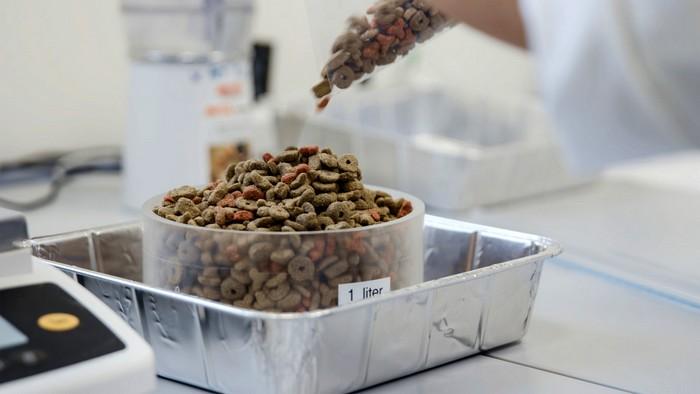 Manufacturing Process
Manufacturing Process
5+ MIN
06/10/2020
GEA opens New R&D Center to drive Innovation in Pet Food Production
GEA has recently opened the doors to its new GEA Pet Food Experience Center (PEX) in Galliera Veneta, Italy. The role of the new center is to drive innovation in cooperation with customers and industry partners and to function as a locus for sharing latest know-how, where partners can anticipate a high level of technological development support. Situated in Galliera Veneta, the new facility sits alongside the GEA Pavan headquarters where a modern production facility with 400 employees design and build production lines for fresh and dry pasta, snacks, breakfast cereals, extruded products and pet food. One of the success drivers of the business is the well-organized R&D activities which have always taken place onsite and are now strengthened. The GEA Pavan Pasta & Snack Tech Center with three pilot plants and four flexible production lines for analyzing new products under all parameters has been in this location for many years. High-tech equipment for product development The new 1000 sqm facility is home to a team of 30 employees, including process technicians, analysts and mechanics who now have at their disposal a new pilot plant for developing new products as well as a laboratory equipped with diverse instruments for chemical, chemical-physical and rheological analysis and nutritional/organoleptic testing. Customers visiting the PEX will find a complete solution line with the latest machinery technology for each processing step. The mixing and milling section is equipped with a flour mixer, hammer mill and plansifter where new recipes can be tested which includes experimenting with the mixing to find the right solution for each innovative pet food product. The preparation section includes a GEA CutMaster for the preparation of meat emulsions in batches, which compliments the extruder line. Besides the GEA CutMaster, GEA also can supply continuous preparation lines with grinders, mixers and emulsifiers. The extrusion and inserts area is furnished with a pre-conditioner and twin cooking extruder. Diverse molds and die are available for testing and experimenting with product formats and shape, and for checking compactness and quality of final products. A coex cutter for pillows, a tumbler and spray unit as well as a flavoring drum are available in the tumbler and finishing section. Lastly, the drying zone is equipped with both a static and a continuous dryer for achieving specific flavor characteristics, which requires temperature-specific handling 'Our long-term strategy and goal here, as it is for GEA globally, is to be the preferred partner of choice for customers worldwide. With our state-of-the-art technologies and comprehensive application expertise, GEA strives to be the world's leading technology group, providing innovative and sustainable solutions for sophisticated process industries. Our new Pet Food Experience Center is a place for learning: how to create and process new products, leverage new raw materials, create new recipe ideas – and ultimately, new ways to strengthen the position of our customers on the market,' explains Klaus Raths, Head of Strategy and Business Development for GEA Food and Healthcare Technologies. Interactive pet food workshops offered Learning and hands-on education play an important role at the new GEA Pet Food Experience Center. This includes learning about, and understanding how, dry pet food extrusion-cooking technology works; what the main process requirements are; how to operate and maintain the equipment, what role digitalization plays and how to use it in processes, and many other important topics. The R&D center can also be used as a training ground for customer employees, where they can learn about efficient processing and best practice. Workshops provide the participants with an introduction to the basics of extrusion-cooking technology, focusing on preconditioning, energy consumption, as well as the importance of moisture and mass flow balance. The primary aim is to help attendees learn how to be efficient at every step of the dry pet food production process, which includes: selection of raw materials, raw material intake, handling, weighing and dosing, mixing, grinding, conditioning, extrusion-cooking, forming, drying, coating and storage/packaging. Hands-on exercises give participants a unique opportunity to learn about the engineering behind our twin-screw extrusion-cooking technology, screw configuration, selecting the proper die and cutting device, SME control, product density control as well as their significance in various methods of product coating. The skills and know-how learned in these practical demonstrations can then be used in the R&D pilot plant. Next-generation technology solutions for modern dry pet food Pet food customers are increasingly looking for products that mirror those available to humans, not only from a nutritional and production quality standpoint, but also in terms of the variety of formats. Thanks to its long history and experience in developing food processing technologies, GEA can offer advanced solutions that are capable of setting new standards in the market. 'Our philosophy is about working alongside our customers, supporting them in creating and developing innovative products, helping them define the formulation, form, consistency, weight, flavor and color of their particular product to ensure it satisfies the demands of end-consumers, which in this case includes pet owners and pets. Our common goal of achieving an innovative and high-quality industrial production begins with collaboration at the research phase and culminates with the provision of advanced processing technologies, based on the customer's specific requirements and KPIs,' says Vanni Antonello, R&D Senior Technologist for GEA. En el nuevo Pet Food Experience Center (PEX) de GEA, se crean productos innovadores de alimentos para mascotas en colaboración entre los expertos en tecnología de GEA, los clientes y los socios de la industria. (Foto: GEA, Anima Film srl) GEA offers complete solutions to produce dry food of the highest quality for dogs and cats. GEA understands this market is changing and diversifying rapidly, which is why the company offers customized process solutions for fresh meat inclusion, grain-free formulations and alternative protein sources, including equipment for snacks and treats production. The offer includes designing and implementing these solutions to meet specific customer requirements – all followed up with professional service and support as required. Let's co-develop: kibbles, pillows and dental sticks The size, shape and moisture content of each product is determined by the individual recipe, which often includes a large amount of fresh meat. The sophisticated twin screw extruders with their unique dough conditioners, ensure precision results and meet the highest standards requirements for pet food production while reducing costs significantly. GEA has made its own detailed study of those pet food formulations and formats that both satisfy energy and nutritional needs, while also whetting the pet's appetite. GEA solutions for making kibbles – the most common food in pet diets, produce compositions and formats that are varied according to pet size, age and health. Likewise, additional ingredients can be incorporated in the kibble to fulfill other functional needs. Pillows, on the other hand, are snacks or that tasty reward for positive pet behavior. Using extrusion-cooking technology, GEA combines grains with a flavorful and nutritious filling based on the specific requirements. Dental sticks are designed and developed specifically to help dogs keep their teeth clean. Thanks to their unique shape, sticks are able to get into those hard-to-reach areas to clean teeth, which protects the pet's health while providing them with the nutrients they need. Innovative machines and systems from GEA produce dry pet food of the highest precision and quality. by GEA Source: All Extruded
 Trends
Trends
4+ MIN
30/09/2020
Control of Industrial Odor Emission in Pet Food plants
AEROX supplies long-term total odor control solutions for Industries around the world. We help our clients reduce their emissions to comply with industrial and government laws.
The Aerox®-Injector eliminates odors produced in industrial processes and is recognized by governments and companies in the sector as 'Best Available Technology'.
A reduction of malodors of up to 95% and a unique technique for eliminating odors from humid air processes, have been an easy choice for multiple world market leaders.
A DEDICATED ENVIRONMENTAL APPROACH
Since odor is more of a nuisance than a political issue or an environmental problem, it is high on the priorities of companies in all sectors. Corporate image and social responsibility are essential to the status and success of companies today, managers are willing to invest in technologies to combat such nuisances.
The Aerox®-Injector is specifically designed with the environment in mind. The injector does not require water, chemicals or fuel to operate.
Thanks to its unique active oxygen technology, which is based on the principle of passing air between specially prepared cathodes and anodes, all it requires is a relatively small amount of electricity. In addition, the Aerox Service program guarantees that all consumables are completely recycled: respectful with the environment.
FROM ELECTRICITY TO CLEAN AIR
- Without fuel
- Without gas
- Without water
- No chemicals
- Without residues
LEADER IN CONTROL OF ODORS
The main objective of our efforts is to eliminate bad odors resulting from your production processes at ground level. The basis of our technology is the Aerox®-Injector, a small unit attached to the outside of the process gas outlet duct that injects 'active oxygen' into it. It oxidizes smelly molecules, making them imperceptible to the human nose.
Thus, through the Aerox®-Injector, your neighbors will enjoy something unquestionable: CLEAN AIR. Aerox has the experience and knowledge of the sources and compositions of bad odors from many Industries as well as the knowledge of their respective production processes. This allows a careful determination of the complexity of each specific situation and the best possible solution. Aerox will reduce your plant's odor emissions to acceptable levels and often even eliminate them simultaneously.
THE AEROX®-INJECTOR, NON-THERMAL PLASMA TECHNOLOGY
The Aerox®-Injector is a non-thermal plasma unit located outside the process gas line. Clean ambient air is used to generate the oxygen radicals, which are injected into the exhaust air flow, oxidizing the odor molecules present and thus rendering them harmless.
ADVANTAGES AT A GLANCE
- Extremely effective odor control
- Injection allows treating large volumes of process air
- Low cost of ownership
- No need for water, gas, or chemicals. Without residues.
- Best Available Technology (B.A.T.)
CONTROL OF BAD ODORS IN VARIOUS INDUSTRIES
Aerox, inventor of non-thermal plasma injection malodor control technology, has 25 years of proven experience in malodor control in multiple industry sectors. The list of specific industries continues to grow.
Truly durable odor control solutions require advanced, custom-made technology. The best way to control bad odors is to study each specific case. Obviously, the starting point of any solution that Aerox supplies is the origin of the production process and the resulting bad odors.
Other factors such as the climate, the geographic situation and government legislation are studied in situ in each specific case.
Furthermore, each Aerox®-Injector unit is adjusted during commissioning by a suitably qualified Aerox engineer.
World market leaders choose Aerox
Aerox B.V. is the world leader in odor control through efficient and environmentally friendly non-thermal plasma injection technology. We have deep knowledge and experience in all aspects of odor control processes, in various industries.
The Aerox process begins by gathering information and providing advice on the feasibility of contracting Aerox in your specific case. Our advice is based on the information you provide us by telephone or by questionnaire, as well as the details of your industrial process, air volumes, geographical location and weather conditions.
Bad odor problems are complex and unique. Aerox, therefore, offers factory on-site testing allowing its customers to determine what Aerox performance and in what capacity. Based on the results obtained from the test, Aerox designs and offers optimal odor control solutions. An experienced and appropriately qualified team of Aerox project engineers will cooperate with customer engineers to ensure an optimal implementation process, tailor-made for the conditions and
plant requirements. After commissioning Aerox will focus on long-term cooperation to provide maintenance services such as module replacement and remote control. This allows to reduce maintenance costs and the proper functioning of the Aerox®-Injector.
MORE INFORMATION
If you want to know more about how it works, you can watch video in English.
If you want more information about the Aerox®-Injector, its possibilities, receive a proposal for your plant or know more about the control of industrial odors in general, please send an e-mail to [email protected] or call directly at +54 9 236 4418899.
Source: Clivio Solutions
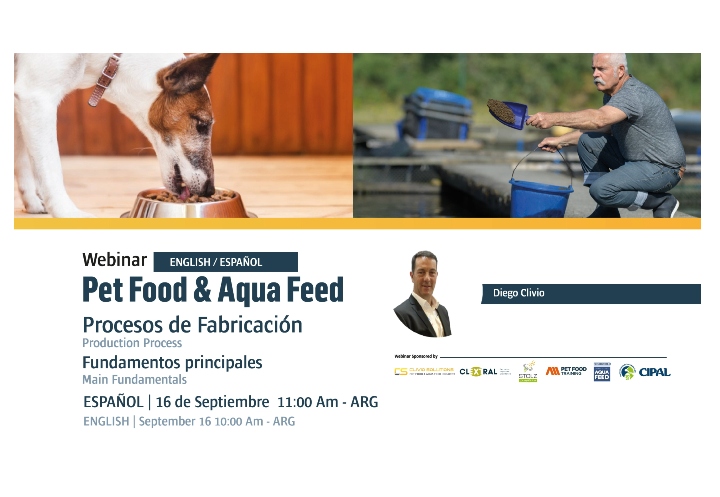 Events
Events
1+ MIN
29/09/2020
Do you want to see the complete Video of the Pet Food & Aqua Feed Production Process Webinar?
Promotional short video: Request the Complete Video by email to:[email protected] Statistics of registered last 16-Sept-2020:
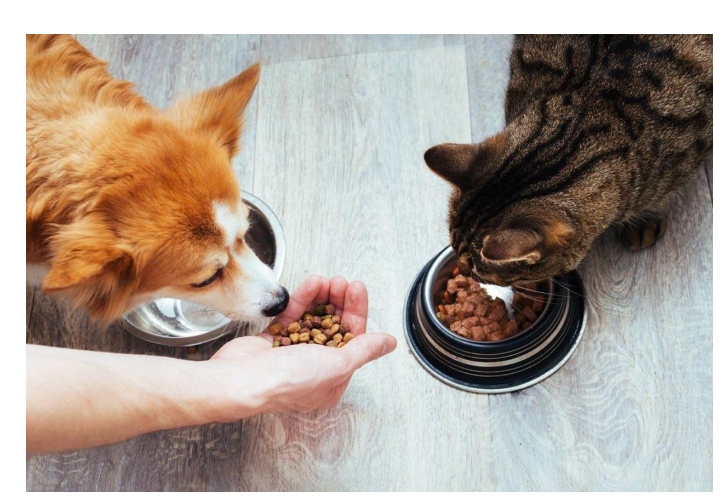 Trends
Trends
4+ MIN
28/09/2020
Packaged Facts predicts top 5 trends for Pet Food
Image Source: © ANASTAS_ - STOCK.ADOBE.COM 09.18.2020 By Jordan Tyler ROCKVILLE, MD. — Private label, a focus on felines, sourcing claims and grain-inclusive formulations are among Packaged Facts' list of five key opportunities for the pet food industry heading into 2021. The market research firm is keeping a close watch on the industry, updating its 'Pet Food in the US, 15th Edition' report to account for COVID-19 implications in June. Overall, the pet food and treat segment is expected to continue on a growth path through the remainder of 2020, with sales projected to increase by 7% to $31 billion. This growth is expected to continue, Packaged Facts reports, at 5.5% in 2021 and 2022, followed by 5% growth in 2023 and 2024. The outlook for discretionary pet product sales overall has also turned, with Packaged Facts projecting 8% growth to $59 billion by the end of 2020. Pet ownership during COVID-19 Packaged Facts expects the number of pet-owning households in the United States will reach 71 million (56% of all US households) by the end of the year, growing 4% from 2019. The market research firm pointed to pet ownership trends during the pandemic as a stronghold for the pet food and treat market. Twelve percent of adults with children under the age of 18 adopted pets because of the pandemic, compared with 8% of all adults. Additionally, 10% of cat owners and 9% of dog owners in the United States said they adopted a pet because of COVID-19 implications, with 10% of all pet owners acquiring pets over the last three months. Over the last year, 14% of current pet owners brought a dog into the household, while 12% added cats. 'Pet food marketers and retailers would do well to target new pet owners and secure their long-term loyalty from day one through 'puppy promotions' and new pet welcome packages,' the firm suggested. Lower-cost private label Although pet product purchasing sentiments remain steady among the majority of US pet owners according to a recent survey by the American Pet Products Association (APPA), there has been question of the economic impacts of the pandemic affecting pet owners' ability to continue purchasing high-priced premium pet food and treat products. Packaged Facts suggests a shift to lower-cost, private-label brands — specifically store and house brands from retailers — occurring to provide more options to pet parents most affected by the pandemic. According to a Packaged Facts survey fielded in April and May 2020, 47% of pet owners reported buying lower-cost store brands of pet food or treats more frequently. In a separate survey by Packaged Facts, 44% of pet owners agreed that the quality of store brands is as good as national name brands, while 23% disagreed. The market research firm has also based its projection for private label brand growth on market shifts seen immediately following the Great Recession, when value-conscious consumers began purchasing more private label brands. Ingredient sourcing Pet owners are becoming more attuned to pet food and treat labels, scanning for high-quality ingredient names and to avoiding products with ingredients they believe are bad for their pets, namely those with names that look and sound synthetic. While there is plenty of room for education in this area, this trend will continue to drive pet owners' purchasing decisions. Packaged Facts suggests ingredient and sourcing claims such as 'fresh,' 'limited ingredient' and 'superfood' are becoming the new 'natural.' Pet foods and treats including novel and alternative proteins have also gained traction. 'In response, pet food marketers need to promote sought-after ingredients while being fully transparent, with product websites and labelling telling the full story of where the ingredients come from and how the products are made,' Packaged Facts stated. 'Looking ahead, Packaged Facts expects to see marketers and retailers of premium pet foods increasingly involved in sustainability, animal welfare, and socio-economic system initiatives.' Grain-inclusive gains Following the US Food and Drug Administration's (FDA) announcement of a potential link between diet and canine dilated cardiomyopathy (DCM), pet food manufacturers have put the focus back on grains, formulating grain-friendly and grain-inclusive diets for concerned pet owners. More research is needed to determine if this link is valid. Nevertheless, ancient grains have entered the limelight, including spelt, quinoa, sorghum, amaranth, quinoa, millet, buckwheat and chia. Plant-based ingredients commonly considered as healthy human foods have also increasingly entered the pet food space, including superfood ingredients such as kale, spinach and blueberries. 'With the resolution of the FDA investigation of the DCM situation still possibly years away, marketers will need to address pet owner concerns and offer new premium options above and beyond grain-free,' Packaged Facts stated. Cat-centric Last but certainly not least, Packaged Facts projects the pet food and treat marketplace to shift focus toward cat products, which have historically been stuck in second place next to the dog product market. While cat ownership has remained flat and dog ownership is on the rise, cat owners are demanding a wider variety of better and more innovative products for cats, including functional formulas, better supplemental nutrition options, more natural options and an overall more proliferated marketplace. 'More and better products and services for cats, and more marketing attention, stand to encourage cat owners to invest more heavily in the health and happiness of their purr babies and — most important of all — attract more Americans into the feline fold,' Packaged Facts stated. Other growth factors Above all, a common thread driving these trends is a surge in online pet food and treat sales, driven primarily by e-commerce giants Chewy and Amazon, 'whose swift advances have been more than offsetting the resultant drag on brick-and-mortar sales,' Packaged Facts said. The market research firm expects online pet product sales to account for 27% of total sales by the end of 2020, jumping to 35% share of sales by 2024. This, coupled with continuing premiumization, support for new formats such as fresh and frozen, and mass market proliferation, will continue to drive the pet food and treat industry forward in uncertain times. Source: Pet Food Processing
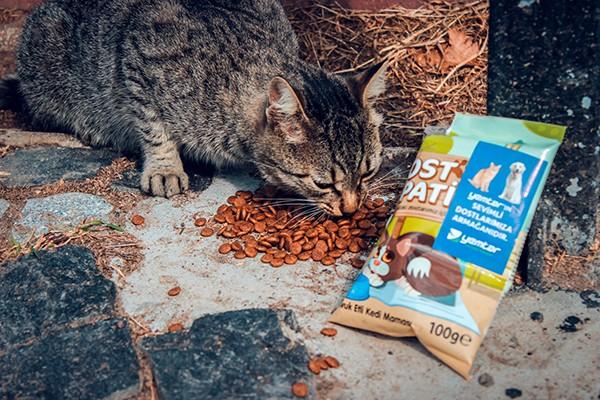 Extrusion
Extrusion
1+ MIN
25/09/2020
Yemtar Provides Feed for Cats and Dogs
Yemtar, one of the leading Turkish feed machine manufacturers, is undertaking a social responsibility project for cats and dogs. Within the scope of the project carried out with the slogan 'We are Responsible to Them', food for cats and dogs is left in many points of Bandırma, Turkey. Serving in the feed machinery sector for 40 years, Yemtar is adopting a social responsibility project for cats and dogs in Bandırma. Offering machines that produce the most suitable food and feed for the natural feeding of animals, the company leaves cat and dog food in many points of the city. In the statement made by the company officials, the project was announced as follows: 'In our 40th year, with our motto, 'We Feed Like Nature' we hanged cat and dog foods at many points all around our city. Please join us, spread love and happiness to our little friends and feed them with our small gifts.' by Yemtar
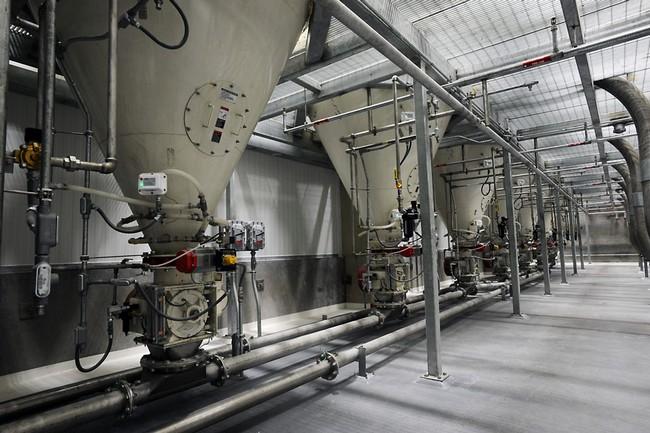 Conveying Systems
Conveying Systems
5+ MIN
24/09/2020
Pet Food: Bulk Material Handling Systems
The pet food industry has long searched for methods to control the movement of ingredients through to the manufacture of the finished product and from process to packaging in a reliable, inexpensive, maintenance-free system that yields little or no breakage. Schenck Process provides a range of pneumatic and mechanical conveying solutions, bulk material feeders, sifters, screeners, mixers, mills and process controls for the world's most recognizable pet food brands. With a vast amount of experience in the pet food industry, Schenck Process is able to provide process solutions based on the company's core technologies and can advise and design the most suitable arrangement of equipment to improve the efficiency and production rates of most processes. Aware of the need to produce the highest quality product together with minimal product degradation, the elimination of inefficiencies and ensuring product safety, Schenck Process can tailor the solution provided to the specific requirements of the client and the installation. Examples of recent installations for the Pet Food industry include: Truck or Railcar unloading and bulk storage systems of meal In-plant transfer systems for major, minor and micro ingredients Plant controls system upgrades Plant dust control systems Hammermill aspiration, convey and dust control Scaling systems for blenders and extruders Coatings handling systems Continuous dense phase transfer of finished products Emissions control systems for dryers and coolers Feeding of majors, minors and dry palatants Off-spec product reclaim and remill systems Extruder negative airlifts Odor abatement The range of technologies available from Schenck Process includes the following: E-finity® Low Pressure Continuous Dense Phase (LPCDP) Pneumatic Conveying systems deliver the least amount of airflow to convey the product with minimal degradation. The system is configured to have a smooth and lip-free connection on tube joints, diverters that reduce cross contamination and provide a smooth, full bore divert and the product is slowed to slide into the termination bin for a gentle landing. Gardner Ribbon Mixers provide consistent batch and continuous blending of powders and granules. The mixers use low energy and provide gentle mixing action with minimal heat generation ensuring that minor ingredients are dispersed homogeneously without the need for pre-mixing. Models with capacities ranging from 50 to 20,000 liters are available. GKM Screeners provide controlled screening, multi-deck classification and de-dusting of dry, powdered and granular products. The screener is particularly suitable for high feed rates, multi-deck separations of fines and difficult to screen lightweight products. Global Cleanable Airlocks (GCA) are ideal for applications where dry raw or finished products are being handled in the process and where inspection or system clean-out are required. Because the GCA is designed for high process rates and possesses a number of features suited for sanitary processes the airlock is perfect for pet food applications. Horizontal Material Separators are cyclones that separate conveyed material from the conveying airstream, minimizing the amount of air that exits with discharge material. The horizontal cyclone design is similar to a standard cyclone however; the main housing unit is turned 90° with both cylinder ends capped. The HMS has a vertical footprint that is 50% less than standard cyclones taking up less manufacturing space and is perfect for handling large and small kibble, large flakes and fish feed. Kemutec Kek Cone Mills are versatile size reduction machines for powder processing applications. With an ability to process a wide range of feed material and produce an equally wide range of product make the cone mill ideal for sizing in both wet and dry granulation processes. The Kek Cone Mill provides a gentle, low energy form of size reduction and eliminates traditional milling problems including noise, dust and heat generation. The gentle grinding action is capable of control within fine limits while maintaining a close particle size distribution with minimal fines generation. Kemutec Kek Sifters are designed for the removal of unwanted materials such as strings, packaging, and insects from bulk product or minor ingredients along with the removal of de-agglomerated hard lumps of product. Fitted with a cantilever shaft the Kek Sifter provides users with a high standard of hygiene and ease of operation. A 30-second screen change and no tools required for stripping the unit down make cleaning and maintenance quick and easy. MCF PowerSaver® Dust Collectors save up to 50% of operational costs by using medium pressure air for the cleaning cycle. An integrated blower provides the 0.49 bar medium pressure air for cleaning which eliminates the need for plant compressed air in the filter and frees up existing compressed air capacity for use in other processes. The MCF PowerSaver provides excellent operational capabilities in high dust load applications. MechaTron® Feeders are perfectly suited to handle a wide range of volumetric or gravimetric feeding applications. With the unique feature of complete disassembly from the non-process side, users can quickly clean, reconfigure or service the feeder. Sanitary 3-A models of the MechaTron® are also available. The MechTron is perfectly suited for feeding majors, minors and dry palatants. ModuPlasma™ is an odor abatement system that uses direct treatment, which means the emission is led through the energy field, in opposition to other plasma solutions, where ozone is injected into the emission. This direct treatment results in oxidation 1 to 10 million times faster than in nature. Quick results and done in an environmentally safe manner. MoveMaster® Chain Conveyors for the movement of bulk grain supplies from delivery vehicles into storage silos. The chain conveyors have a high tensile strength to handle a large volume of material together in a reliable and efficient manner with minimal maintenance requirements. MULTICOR® Mass Flow Meter's accuracy, low profile, and dust tight solution make it ideal for extruder milled grain metering. Designed with a drive shaft and partitioned measuring wheel, the MULTICOR applies the science of Coriolis technology by accelerating the raw materials and their resultant forces to accurately measure flow rate. MULTIDOS® DEA Open Frame Weighbelts are designed specifically for sanitary pet food and food processes. A tool-less, rapid belt removal for frequent cleaning cycles, an IP69K stainless steel load cell manufactured to withstand high pressure spray, a shaft mounted, wash-down drive system for simple power transmission, and product contact surfaces with 316 stainless steel make it ideal for sanitary weighing and feeding applications. Supplied Air Extruder (SAE) Hood is a key component of the Schenck Process high feature Supplied Air Negative Airlift, which conveys extrudate from the extruder to the dryer with HEPA filtered or treated convey air instead of potentially contaminated air from the extruder room floor. This is important to all pet food producers concerned with avoiding finished product bacterial contamination after the extrusion kill step. by Schenck Process Source: All Extruded
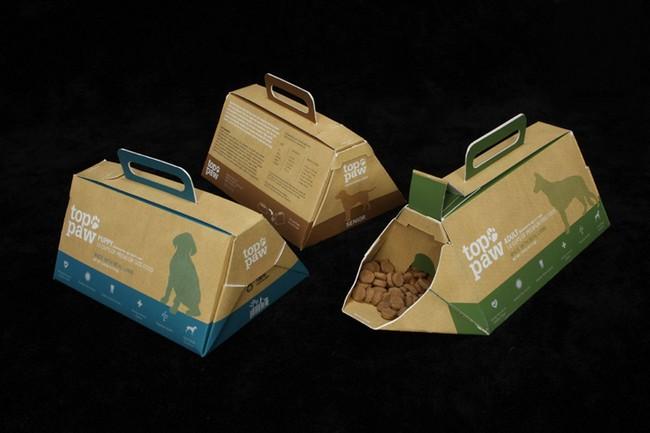 Packaging
Packaging
2+ MIN
24/09/2020
Market Trends that are Changing the Way we Package Pet Food
Humanisation of pets is more relevant than ever, and as owners expect only the best for their pets, new packaging innovations are needed to be able to unite convenience, freshness, and sustainability.
The human experience for pets
In 2020, as new generations become pet owners and emerging markets are treating pets more like part of the family, the humanisation of pets across all generations is here to stay. According to Euromonitor, pets are benefitting from more spending on their health and happiness.
However, even though pets may seem like members of the family, they still need their owners to open the packaging for them. Leaders in the packaging industry are thinking of new ways that packaging of the future can be more convenient through easier resealable functionalities, shapes and sizes.
Sustainable packaging preferred
Owners are scrutinising the ingredients inside the bag to make sure their pets are eating only the best. So, optimal readability of nutritional information on the package, opening convenience and freshness are a growing demand among consumers in the US, according to the Premium Pet Packaging survey.
Yet, as demand around reducing plastic packaging increases, consumers are looking for more sustainable and recyclable solutions and packaging that is appealing, to make the pet food more distinguishable. Thus, the packaging may contribute in positioning the food as more premium. In the same study, one in three pet owners claimed they would switch to a brand that offers a more sustainable package and 75% of customers said that they would be more favourable to a brand if it offered sustainable options.
Latest snacks in latest packaging
As humans treat their furry friends more like people, treats and snacks are a growing way to entertain pets and keep them happy. So, the latest packaging offerings have zippers that reclose to maintain freshness, come in sizes that fit every shape and treat type, and provide protection on the go.
Together with a creative strategic agency, Mondi developed a design thinking approach to create a new breed of innovative and sustainable pet food packaging solutions. These options optimise manufacturing efficiency without compromising on the look and feel of the product. Mondi's mission is to provide high-quality packaging in pet food that is sustainable by design.
by William Kuecker
 Vitamins
Vitamins
3+ MIN
22/09/2020
Behavior & Protein: Does Protein in Dog Food Play a Role in Your Dog’s Behavior?
We've previously talked about protein in commercial pet foods and home-cooked diets. Typically, our focus is meeting your pet's biological needs. However, you may have heard friends, dog trainers, or even veterinarians talking about feeding a low protein diet to treat behavior issues. But what does a low-protein diet really mean, and how do these testimonials compare to the science? What is a 'Low Protein' Diet? Unfortunately using terms like low or high can be rather confusing in pet nutrition. Healthy adult dogs (over one year of age) need a minimum of 4.5 grams of protein for every 100 calories they consume (Unsure how this compares to the percentages on the back of a pet food label? You can convert the numbers by using the calculator here. Beyond this minimum requirement, there is no legal definition or even a general consensus of what exactly a 'low' or 'high' protein diet actually is. Each trainer, veterinarian, or nutritionist might have different ranges for what they consider in each category. In research or in recommendations, it's important to clarify the actual amount of protein recommended and compare that to the minimum amount a pet needs and the current amount consumed by the pet. What Protein Level is Safe to Feed to My Dog? So long as diets are nutritionally complete and balanced for your pet (are above the minimum 4.5 grams protein per 100 calories and meet all the other nutrient requirements) and include an appropriate AAFCO statement, they are formulated to be balanced for healthy pets. There is also no maximum or safe upper limit for protein, but some pets may have limitations on the protein they can safely consume due to medical conditions. You should always consult your veterinarian about diet changes, especially if your pet is growing, pregnant, lactating, or has any medical conditions. What Does the Research Have to Say About the Link Between Diet and Behavior? Although certain amino acids from food have been found to alter the synthesis of neurotransmitters (chemical 'signals') in the brain, neurotransmitter release and behavior can also be influenced through training or changes in routine. A couple of studies have been done specifically on the relationship between protein and 'problem' behaviors with conflicting results. For example, one study of a lower protein diet found that the behavior of dogs with owner-directed aggression (described as 'dominance aggression in the study) and hyperactivity were unchanged, but that territorial aggression appeared reduced. Conversely, another study found that owner-directed aggression was the only behavior that seemed affected when dogs were fed a lower protein diet. There were some design problems with both studies – when the two diets that were tested were compared more carefully, the two diets tested were actually very similar in protein content and the two groups of dogs had similar overall protein intake, so it's uncertain whether the changes seen were really due to variations in dietary protein versus other factors. More research is needed to fully understand the potential behavioral impacts of various protein content in diets (and not just the total protein content but also the composition of the individual amino acids). Given the limited number of studies currently available, potential benefits of such diets are not strongly supported. However, as long as the diet chosen is good quality and is complete and balanced for your pet, it may be appropriate to see if it improves your pet's behavior (talk with your veterinarian first!). Overall, the best way to ensure healthy behavior for your dog is working with the right experts. Healthy dogs in need of training (e.g., pulling on leashes, jumping up on visitors to lick faces, etc.) should be seen by qualified force-free trainers. Dogs with abnormal behaviors (e.g., aggression, or normal behaviors that are displayed excessively or out of context) should be seen by a Board-Certified Veterinary Behaviorist. It's also helpful to speak with your veterinarian as well, since many medical issues can look like behavioral issues so you'll want to have your veterinarian examine your pet for pain or illness that may be making them act out of the ordinary. by Deborah E. Linder, DVM, MS, DACVN - Clinical Nutrition
 Micro Ingredients
Micro Ingredients
2+ MIN
17/09/2020
Webinar: Successful Formulation With QRILL Pet
A Successful Formulation with QRILL Pet - will provide a practical approach on how to add QRILL Pet to existing formulations.
David Southey will take you through how QRILL Pet can be added to the formulation of various pet food formats (dry, semi-moist, raw, etc.). He will share his experience on how QRILL Pet impacts palatability. Furthermore, he will give practical proposals for using QRILL Pet (e.g. , physical handling, and production parameters) & other tips and tricks. Tonje Dominguez will guide you through the nutritional composition of QRILL Pet and explain the regulatory impact on the formulation.
Don't hesitate to join us on the 23rd of September for this live webinar.
Can't make it? That's ok, sign up anyway and we'll send you the recording afterward. Remember, if you sign up for at least 3 of these webinars, you will receive a care pack and you may be the lucky winner of a very Special Prize!
REGISTER NOW
David Southey - Pet Nutrition Consultant
David established his own consultancy business in 2007, which now employs 3 nutritionists and zoologists, working on nutrition and product development projects for 140 clients in 32 countries around the world. He is also past Chairman of the Additives Committee for the UK Pet Food Manufacturers Association.
Tonje Dominguez -Director QRILL Specialty Animal Products, Aker BioMarine
Tonje Dominguez works as Director of QRILL Specialty Animal Nutrition Products in Aker BioMarine. She holds an MS degree in Animal Science and has more than 13 years of experience in various roles in the pet nutrition business, as well as 6 years as an R&D manager in the human nutrition business.
Gunhild Yksnøy
QRILL Pet Customer Business Development Director,
Aker BioMarine
by All Extruded
 Interviews
Interviews
5+ MIN
10/09/2020
Interview with Mr. Ed de Souza, Extrusion Systems Process Director of Wenger Manufacturing
Ed de Souza graduated with a degree in Agribusiness at Fort Hays University in Kansas, USA in 1995. He also obtained a master's degree in Business Administration, with a focus on business management at Fundação Getúlio Vargas.
Mr de Souza was hired by Wenger Manufacturing Inc in late 1995. Working at Wenger for the past 24 years, he has developed an extensive know-how in food extrusion processing. He has worked in food extrusion research at the Wenger Technical Centre in Sabetha, Kansas, and has knowledge also as a field service technician working with equipment start-ups, process troubleshooting and providing lectures and training.
How did you come to be involved in this industry?
After graduating with a degree in Agribusiness at Fort Hays University in Kansas, USA, I was interviewing with two multinationals in the commodities business, paperwork related to work visas halted these processes. By chance, I went to visit Sabetha, Kansas, the headquarters for Wenger Manufacturing, Inc., with a college friend, before I returned to Brazil, my home country. At a local high school football game, I met with the service manager for South America and the rest is history. I landed in this business by chance and I believe it was meant to be, as I fell in love with extrusion processing right away.
What has been your proudest achievement, whilst working at Wenger? Has the company expanded greatly since you have been part of the team?
In 2000, my US work visa expired, and I had to make the decision to move to a different country. Brazil was, at the time, a great market and at full expansion for pet food and aquatic feeds. Our customers needed local support and parts, so I was proud to help starting Wenger conduct business in Brazil.
Firstly, our Brazilian office served as a service office and soon after we moved in manufacturing parts and then equipment, before evolving into a full blown modern manufacturing plant in 2013. It is an honour being a founder of Wenger within Brazil and representing Wenger Manufacturing, Inc. I consider this to be a great achievement in my career and, yes, the company has expanded greatly since I have been part of this proud team at this honourable company and I have so much to be thankful for.
What are the biggest challenges for your industry, and how do Wenger combat and resolve these issues?
The extrusion industry faces challenges that are often overlooked. Most extruded aquafeed manufacturers focus too much on cost accounting, and there is a fine life between being cost effective and losing throughput and product quality. If these areas were focused on, as they are key for product improvement and financial gain, then manufacturers could process better products in larger quantities, using a lot less resources:
Raw Materials: Investing a small percentage in formulation cost to provide extrusion friendly ingredients, such as better starch sources and functional proteins, can possibly double the throughput of an extrusion line, using essentially the same fixed assets and fixed cost.
Hardware: Reduced capital investment for inferior standard and or inappropriately engineered and configured grinding, extrusion and drying equipment can result in a continued higher processing cost and lower throughput for the life of the equipment, resulting in higher use of resources due to inefficiency. The lack of proper asset maintenance, which is preventive as opposed to corrective, is a major road block for efficiency and output quality on an extrusion line. Proper preventive maintenance is the very essence of asset preservation: it prolongs the life of productive equipment at a minimum cost, as well as preserving the output quality and ensures reliability.
Asset maintenance, especially with extrusion cooking equipment, should not be considered as a lump sum that needs to be reduced in the budget of next year, rather it needs to be viewed as crucial key performance indicator and analysed as cost-per-tonne. In most cases, a planned preventive maintenance programme will represent less than two percent of the total production cost but, if neglected, it can result in throughput loss, product quality decline and loss of clientele.
The third topic that serves as a challenge for the industry is control of the processing system. When the two prior points are well managed, process personnel need to be able to precisely control the process for ensuring high quality output on an extrusion line. Processing software has the ability to offer user friendly process tools that ensures a smoother extrusion process and the highest quality product, as well as the ability to provide data for managers to assess and carry out corrective decisions.
Wenger has developed and continues to improve its processing equipment, namely extruders and dryers, to provide a user friendly and durable state-of-the-art solution, and modern processing tools overcome ingredient variations and other potential hurdles. Through years of know-how and process engineering, Wenger offers a comprehensive and precise process control automation by our one and only Automated Process Control system (APM™). Wenger values what is best for our clients.
You recently took part in the Aqua Feed Extrusion Conference and gave a great presentation concerning operational excellence leadership. How do Wenger incorporate these leadership techniques to ensure your company remain at the peak of the processing industry?
Wenger focus on providing all-inclusive process support, in addition to advanced extrusion equipment and modern processing control tools. One of our most appraised support systems, Wenger CARE™, improves our customer´s operations, generating more quality products with the least resources spent.
What do you see as a possible challenge that the industry may face over the next five years, and how will your company play a part in prevention or solving it?
The COVID-19 pandemic presents interesting opportunities. I believe we will see an increased consumption of cultivated fish, due to its minimised impact on the environment and increased number of people adopting pets, as well as extruded plant protein derivatives as an alternative nutrition for humans. We are ready with superior technology for the three area we specialise in: State-of-the-art and advanced extrusion equipment for pet food, aquatic feeds and human food.
Has COVID-19 affected business in any way for Wenger? How has the company overcome these challenges?
We have seen challenges, primarily brought about through the limitations on travelling, but, on other hand, we have developed new and improved tools for remote access for client interaction, equipment commissioning and client support.
What makes your company stand out from its competitors? Do you have any projects or plans that we should look out for over the coming year from you and your company?
What we focus on is the customers' best interests. Our vision is simply to be the best partner our clients can attain. This vision represents our commitment to state-of-the-art and advanced extrusion solutions and innovative processes utilised via expert support. We are also very focussed on research and development. We are, just now, renovating and substantially improving our 55-year old extrusion research centre in Sabetha, Kansas, refining it in terms of both size and technology, making sure our customer stands out from the competition, right from day one and use just the minimum of the earth´s resources.
by Perendale Publishers
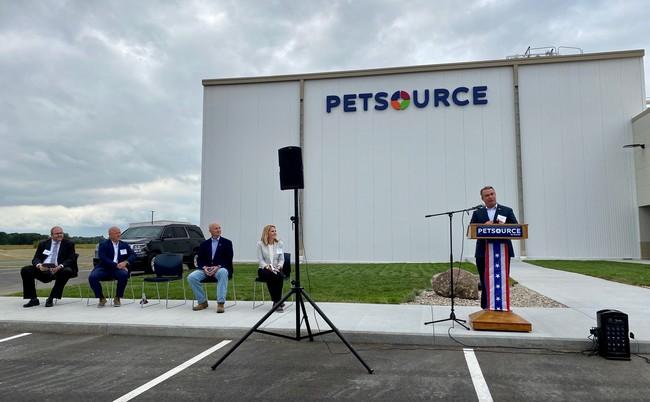 Formulation
Formulation
2+ MIN
07/09/2020
Petsource by Scoular facility to begin Operations in October
The Scoular Company celebrated the completion of its $50 million freeze-dried pet food ingredient manufacturing facility in Seward on Sept. 1, a new business division named Petsource by Scoular. The facility will begin operations in October. The Scoular subsidiary will develop, procure, freeze-dry and package high-protein ingredients — such as freeze-dried whole organ meats and meat analogues — for various pet food manufacturers at this new facility. It will also have an in-house testing laboratory to help develop and analyze its pet food ingredients. 'We are excited to drive innovation in the pet food industry and encouraged by our customers' enthusiasm for the capabilities within our new facility,' said Amy Patterson, general manager of Petsource. 'We look forward to creating new partnerships with our customers by bringing product development together with meat processing, freeze drying and packaging to provide a complete freeze-dried pet food supply chain.' The ribbon-cutting ceremony was attended by Nebraska Governor Pete Ricketts, US Congressman Don Bacon, who represents Nebraska's second district and serves on the House Agriculture Committee, and other local civic leaders. The facility spans 105,000 sq ft and, once fully operational, will employ up to 100 people. 'Scoular has been creating opportunities for Nebraskans for over a century,' Ricketts said. 'The Petsource operation brings great jobs to Seward, and we're grateful for Scoular's ongoing commitment to growing its business in the Cornhusker State.'Scoular first announced its plans for Petsource and the Seward facility in March 2019 and broke ground in Seward in August 2019. 'Nebraska is the center of agriculture in the United States because of the quality commodities we grow and raise along with the innovation that is generated by such companies as Scoular,' Rep. Bacon added. 'This Petsource facility highlights the rich resources available in our community but also the brilliant and ingenious talent produced by our Nebraska educational institutions.' Scoular worked with the City of Seward, Seward County Chamber & Development Partnership, the Nebraska Department of Economic Development, and Gray Construction, the design firm tasked with engineering, architecture and construction of the Petsource facility. By Jordan Tyler Pet Food Processing
 Manufacturing Process
Manufacturing Process
6+ MIN
01/09/2020
TOMRA Food to Showcase its advanced Sorting Solutions for the Pet Food Industry at Petfood Forum 2020
More and more, pet food manufacturers such as the UK manufacturer JG Pears, require being able to receive high-quality, clean raw materials. TOMRA's optical sorting technologies have proved equally effective in earlier stages of the supply chain, enabling suppliers to offer this guarantee.
TOMRA Food will be present at Petfood Forum 2020 under the category Processing Equipment to explain how its sensor-based sorting solutions raise the bar on pet food quality. This virtual edition will allow attendees the opportunity to schedule meetings with a representative from TOMRA, access various materials, view videos and learn more through customer testimonials.
The pet food industry is evolving as a result of a shift in consumer demands, with pet owners paying more attention than ever to quality and ingredients. They are willing to pay more to ensure their pet's good health and tend to remain loyal to the pet food brand that delivers a consistently high-quality product over time.
If they find foreign material or cross contamination in their bag of kibble, they won't always complain; they will switch to another brand and are very unlikely to come back. The cost in lost customers of a seemingly minor irregularity can be very high. This means that for pet food manufacturers consistency is crucial: to remain competitive in today's market, they must ensure their product is clean, safe and exactly what it claims to be – every single time.
Foreign materials and cross contamination are key challenges for pet food manufacturers. Animal by-products used for pet food such as dry meat, bone meal and ground frozen meat are collected from slaughterhouses and can contain a wide variety of foreign materials. Similarly, biscuits residue, which is an ingredient for dry kibble, can contain plastic or cardboard from wrappers and boxes. All these need to be accurately and consistently removed. Cross contamination of product types, or Stock Keeping Units, can occur when dry kibble storage silos are not completely emptied before refilling. TOMRA can help manufacturers address these issues successfully with its optical sorting solutions specifically tailored for the pet food industry.
Lars Povlsen, TOMRA Food´s Sales Manager Pet Food stated: 'We love our pets and we have become very demanding when it comes to the quality and product safety of the food we give them. We know that claims and product recalls in this industry are very often related to the presence of foreign objects or cross contamination.
By tackling both issues, our optical sorting machines can help pet food manufacturers protect their brand and safeguard their business by giving their customers what they want: the assurance of high quality in a clean, safe product. What's more, our sorters can handle with ease the high throughputs of the pet food processing industry and can run with total consistency 24 hours a day, 7 days a week. This means enhancing quality without creating bottlenecks in the process. With our technology, manufacturers can really raise the bar on pet food quality.'
TOMRA has brought to the pet food industry its industry-leading technologies designed to ensure the purity of food for human consumption. It has tailored sorting solutions that address the specific challenges of creating pet food from frozen ground meat, and meat, bone and feather meal. The optical sensors in its sorters identify foreign material or cross-contamination based on color, structure or composition with extreme accuracy and efficiency. The result is a high-quality, clean product and a dramatic reduction in the risk of claims and product recalls.
'One of the best investments made by the business in the last three to four years'
GA Pet Food Partners, Europe's leading manufacturer of private label premium dry pet food, has experienced first-hand the benefits of TOMRA's Nimbus BSI+ optical sorters: 'What I liked about the TOMRA solution was the ability to inspect each individual kibble within a batch and compare that against defined and agreed quality attributes,' explains Andy Kettle, Managing Director.
The Nimbus BSI+ free-fall sorter combines the efficiency of laser detection of foreign material and TOMRA's proprietary Biometric Signature Identification (BSI+) technology that detects biometric characteristics of objects. It is a high-capacity sorter that consistently ensures extremely accurate removal of foreign bodies from the incoming raw materials.
For GA Pet Food Partners, TOMRA's optical sorting solution not only achieved the desired results, it also created new business opportunities: 'Our partners certainly are very delighted with the technology; it has helped us to break open new markets which previously would not have been available to GA. For me it's been one of the best investments made by the business in the last three to four years.'
'We see very, very little waste and foreign bodies in our material'
For pet food manufacturers, being able to count on receiving high-quality, clean raw materials is a clear advantage. TOMRA's optical sorting technologies have proved equally effective in earlier stages of the supply chain, enabling suppliers to offer this guarantee.
JG Pears, a leading processor of animal by-products and food waste in the UK, produces a range of meals and fat for the pet food industry. It is a company that prides itself on the quality of its product, and the accurate removal of foreign bodies from the incoming raw materials is critical to achieving these high standards. TOMRA installed Nimbus BSI and Nimbus BSI+ sorters on its low temperature line to optimize this part of the process.
'The main thing that we wanted to concentrate on was the removal of any plastics,' explains Vicky Prussia, Customer Relations Manager. 'After we'd installed TOMRA, we started to look at some of the things that the machine was taking out of our process, and some of the things that we saw were things like plastics, wood, rubber. Just having the TOMRA machines in the factory, we can see now that we are removing more of the foreign bodies.'
Craig Harrison, JG Pears Site Manager, is delighted with the sorters: 'Non-conformances with our customers have reduced dramatically, and regarding the TOMRAs we see very, very little waste and foreign bodies in our material. The current customers already have seen the difference in the finished product and we're also having lots of interest from additional customers asking and enquiring about buying our material.'
About TOMRA Food
TOMRA Food designs and manufactures sensor-based sorting machines and integrated post-harvest solutions for the food industry, using the world's most advanced grading, sorting, peeling and analytical technology. Over 8,000 units are installed at food growers, packers and processors around the world for fruits, nuts, vegetables, potato products, grains and seeds, dried fruit, meat and seafood.
The company's mission is to enable its customers to improve returns, gain operational efficiencies, and ensure a safe food supply via smart, useable technologies. To achieve this, TOMRA Food operates centers of excellence, regional offices and manufacturing locations within the United States, Europe, South America, Asia, Africa and Australasia.
TOMRA Food is member of the TOMRA Group that was founded on innovation in 1972 that began with design, manufacture and sale of reverse vending machines (RVMs) for automated collection of used beverage containers. Today TOMRA provides technology-led solutions that enable the circular economy with advanced collection and sorting systems that optimize resource recovery and minimize waste in the food, recycling and mining industries.
TOMRA has ~100,000 installations in over 80 markets worldwide and had total revenues of ~9.3 billion NOK in 2019. The Group employs ~4,500 globally and is publicly listed on the Oslo Stock Exchange (OSE: TOM).
Contact: Marijke Bellemans - Marketing Communications Manager
T: +32 (0)16 74 28 17 M: +32 (0)476 74 19 18
E: [email protected]
W: www.tomra.com/food
Source: All Extruded
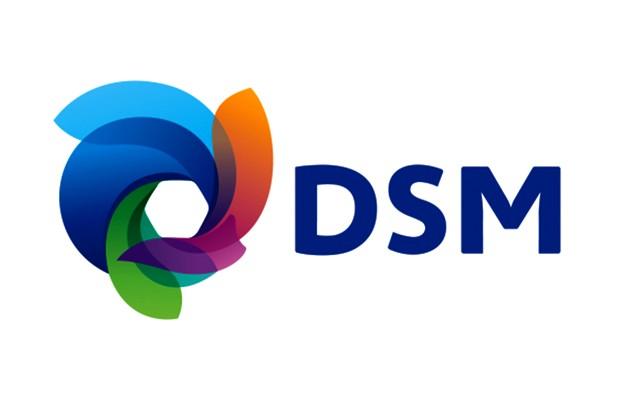 Vitamins
Vitamins
2+ MIN
31/08/2020
DSM highlights Preferences for Immune-Boosting Pet Diets
DSM reports immunity is priority in pet food formulations Pet owners are getting keen on reading labels and looking for functional ingredients, namely searching for formulas that contain added vitamins and nutrients that boost immune system health, according to a recent pet owner survey by Royal DSM. The survey included 500 dog and cat owners living in the United States. A majority (72%) were dog owners, 48% were cat owners, and 6% owned a bird or reptile. Some households represented mixed-species ownership. DSM reported 69% of pet owners said they are more likely to purchase pet food products that offer optimized vitamin and nutrient levels that support healthy immune systems. Another 70% said they believe the inclusion of vitamins and nutrients in pet food is of peak importance to pet health. Additionally, 73% of pet owners surveyed said they believe the brand they already purchase provides the correct amount of vitamins and nutrients to support immune health. 'In recent months, keeping our immune systems and those of our pets has become keenly important,' said Julia Novita, marketing manager for pet food, North America at DSM. 'By offering our pets the right foods — rich in key vitamins and nutrients — we can help maintain our pet's health. We know, for example, the right amount of vitamins D, C and E, key B vitamins with beta carotene plus essential minerals and omega 3 fatty acids nourish the immune function which helps aid our pets against everyday challenges. Because we've all been spending more time at home, the bond with these four- legged family members is especially strong right now.' As the pet industry continues to trend toward functional ingredients and solutions-based formulas, it's crucial to keep a finger on the pulse of pet owner preferences and priorities. By Jordan Tyler Source: Royal DSM
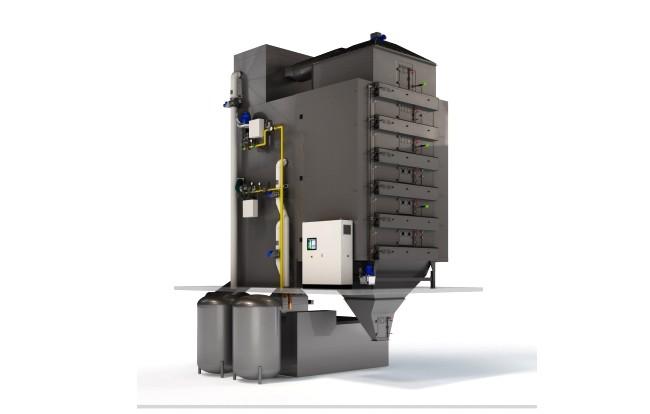 Drying
Drying
2+ MIN
25/08/2020
Second Electric Dryer sold to China - Geelen Counterflow
Geelen Counterflow has started the engineering and manufacturing of the second electric dryer for extruded petfood, to be installed in 2021 in China. High temperature industrial heat pumps will supply 2400 kW of heat to a 7 deck counterflow dryer and 65% of that heat will be recovered and re-used in the dryer. The first electric dryer is being assembled in South Korea for another customer and will be commissioned in 2021. Both electric dryers will initially be commissioned with gas burners. This allows installation and commissioning according to standard operating procedure. A few months later, once the dryers are up and running, the Counterflow Recovery Units (CRU) will be commissioned to start recovering energy through condensation of the warm moist air coming out of the dryer. The warm water coming from this CRU will be boosted in temperature by high temperature industrial heat pumps which will supply 100% of the heat for the dryer, so then the gas burners can be switched off or go in stand-by mode. The net energy consumption of the dryer will then be up to 65% lower and consist of electricity only. If the electricity is from renewable sources, the direct and indirect CO2 emissions of the dryer can be eliminated. Since dryers are by far the biggest consumers of gas in the plant, this typically reduces the CO2 footprint of the entire production line by more than 50%. Geelen Counterflow started developing this technology in 2014. It was tested and approved on pilot scale in a commercial petfood plant during 2016. Since then, full scale components have been developed and tested and the technology has been on the market since 2018. It is no coincidence that Geelen's first electric dryers will be installed in the petfood industry. The market leaders in this industry have short term ambitious targets for net zero greenhouse gas emissions in order to comply with the Paris climate agreement. Electrification through heat pumps is the only technology that enables not only the elimination of CO2 emissions from dryers but also a big improvement in energy efficiency. The majority of new dryers installed by Geelen for extruded petfood and aquafeed are now of the latest MkIV generation, which means they are prepared for either gas-burners and/or electric heat pumps. Plants that now install dryers with only gas burners can upgrade them to heat pumps and heat exchangers with a minimum of downtime. A flowsheet and more details of the process can be found here : For more information, please contact [email protected] by All Extruded
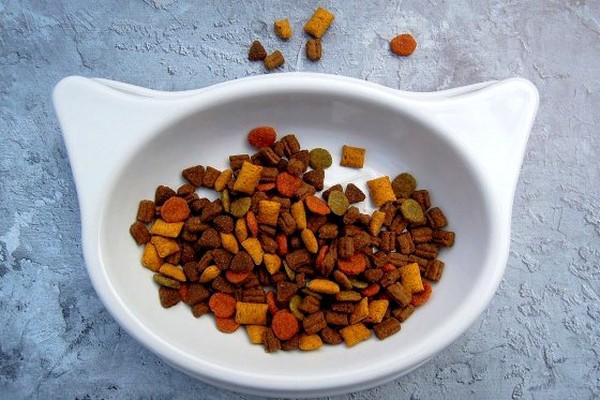 Market Information
Market Information
2+ MIN
24/08/2020
Strong Demand for Pet Food in New Zealand
New Zealand exports a large amount of pet food, though there is also a strong import demand. In 2019, petfood imports reached US$ 120 million with the US being the number one supplier.
With a population of less than 5 million people, New Zealand is the 7th largest market for US petfood with imports reaching a record level in 2019. The country has a large pet population, and in fact has one of the highest rates of pet ownership in the world with nearly half of all households owning a cat and around one-third owning a dog. Consumers also have high spending power, which makes it an attractive market for petfood. The US remains the number one supplier of petfood to New Zealand, with major competition from Australia.
The top 6 suppliers of petfood to New Zealand in 2019:
The US – US$ 39 million
Australia – US$ 36 million
Canada – US$ 15 million
France – US$ 11 million
Thailand – US$ 10 million
China – US$ 3 million
(Source: Trade Data Monitor)
Exports and imports on the rise
New Zealand has experienced rapid growth in both exports and imports of petfood. Exports have seen particularly strong growth, doubling between 2015 and 2019, reaching US$ 129 million. Petfood exports are supported by the production of a variety of more 'exotic' meat products in New Zealand, including venison, possum, rabbit, and lamb. These products are integrated with values such as sustainability, natural prey and natural products.
Total New Zealand Petfood Trade
Despite strong and growing domestic production of petfoods, and as a result of consumers demanding a wide variety of choices of products for their pets, import demand in New Zealand has also strengthened, growing from US$ 92 million in 2015 and to US$ 120 million in 2019.
Current trends in the market have seen exporters shift their product range to a higher end, pouch packet offerings, as well as vegan products, and those that contain perceived natural products.
Some current trends in the market include:
Organic and natural products, e.g. Preservative-free or antibiotic-free products
Humanised food, which reflect products available for humans
Raw or dehydrated foods, e.g. 100% natural ingredients
Gluten-free and allergen-free products
Convenient packaging, e.g. single-serve pouches or resealable containers
Weight management products, e.g. lean meats, including turkey and venison
Impact of Covid-19
Industry sources have reported that during the Covid-19 lockdown in New Zealand, petfood suppliers sold 3 months' worth of products in just 2 weeks, highlighting the importance of pets and their diet to New Zealand consumers.
by USDA GAINS report
 Preservatives
Preservatives
10+ MIN
20/08/2020
How Antioxidants Keep Products Fresh and Pets Healthy
Antioxidants are powerful molecules that serve two purposes in pet foods. The first is to keep the food fresh, mainly by preventing the fats and oils from going rancid through a process known as lipid oxidation. The second is to keep the pet healthy by preventing free radicals in the body from damaging cells and having a deleterious effect on various biological functions. These two purposes for antioxidant addition may create confusion for vigilant pet parent label readers. The required nomenclature for antioxidants may also raise eyebrows. 'The Association of American Feed Control Officials requires all animal food to use consistent, approved names for each ingredient,' said Eric Altom, technical nutritionist, animal health and nutrition, Balchem Corp., New Hampton, N.Y. 'An ingredient that contains strategic antioxidant properties may look like a non-natural material because of the required name.' There are many sources and forms of antioxidants. Isolated antioxidant ingredients, for example, may be extracted directly from foods, such as ascorbic acid (vitamin C) from citrus; however, it is possible to also replicate the structure of vitamins in the laboratory using chemicals, e.g., synthetic vitamins. Ingredient legends do not discriminate between the two. Synthetic antioxidants, on the other hand, are just that. They are chemical combinations recognized as being cost-effective preservatives. Such ingredients often have complex chemical names, such as butylated hydroxyanisole and butylated hydroxytoluene. Antioxidants may also be delivered through whole foods, namely fruits, vegetables and herbs. Extracts have also become quite common. These are concentrated forms neutralized for flavor and aroma. Assisting with shelf life Cats and dogs require fat in their diets and in greater amounts than humans. Fat not only provides energy, it is critical for proper cellular, hormonal and nerve function. It also contributes to the flavor and texture of the food, while keeping coats shiny. Fats readily go rancid if not carefully protected. This is when they develop objectionable flavors and odors. There's no way to prevent it completely, only to slow it, and there's no recovery. Fats degrade when fatty acids react with air, moisture or other compounds and break down into free fatty acids and other unstable compounds. Oxidative rancidity, also known as auto-oxidation, occurs in the presence of oxygen. Thus, the first step for delaying the inevitable is proper packaging and sealing. Hydrolytic rancidity, also called hydrolysis or enzymatic oxidation, occurs in the presence of moisture and the absence of air. This normally is accomplished through enzymatic peroxidation, where enzymes found naturally in plant oils and animal fats catalyze reactions between water and oil. A third type of fat degradation is microbial rancidity which occurs when enzymes from bacteria, mold or yeast break down the fat. Such excessive microbial growth usually visually renders the food inedible. Higher temperatures, light, water, metal ions and biological catalysts may accelerate reactions. The presence and placement of unsaturated fatty acids on the fat molecule also influences the rate of degradation. Thus, fat selection comes into play when taking steps to delay degradation. In general, the more polyunsaturated fatty acids on a fat molecule, the faster it will go rancid. This is due to the unstable double bonds that participate in the various degradation processes. Antioxidant systems containing different combinations of natural phenols, vitamins and organic acids may prevent or slow oxidation. Fat degradation is an issue in all types of pet foods, with longer shelf life products such as dried kibble and jerky-style snacks being the most affected. But it is not just the inherent fat in meat, or the bulk oils added to recipes that may go rancid; specialty, better-for-pet ingredients containing polyunsaturated fatty acids are very unstable and highly prone to oxidation. This includes ingredients such as Omega-3 fatty acids, whole grains and nuts. 'Oxidation is a hot topic in the pet food industry,' said Robb Caseria, managing director, Videka LLC, Kalamazoo, Mich. 'Finding the antioxidant system that will preserve a pet food's sensorial and nutritional properties throughout its shelf life is often a headache for pet food manufacturers.' Auto-oxidation – a chain reaction Auto-oxidation occurs in three stages, with the first being the initiation. It is here where molecular oxygen combines with unsaturated fatty acids, producing hydroperoxides and peroxyl free radicals, both of which are highly reactive and unstable. The second stage is called propagation and occurs when these unstable byproducts of the first stage react with other lipids. This starts a chain reaction, with the reaction supplying its own accelerant. At this point there is no turning back for the fat, as it is in a continuous cyclical oxidative degradation process that will only end upon the final stage, which is aptly known as termination. This can occur when the free radicals become highly concentrated and begin to react together, and by doing so, stop further reactions. Termination can also occur when reactions yield unreactive compounds, thus preventing further propagation. Reactions will also cease when an antioxidant enters the scenario. But at this point, any degradation that has already occurred is permanent. The fat cannot repair itself. If objectionable flavors and odors have developed, they will remain. Initial rancid notes come from the secondary products produced during the initiation stage of auto-oxidation. When the peroxides eventually break down, they decompose into various aldehydes, ketones and acids that exert additional, and typically more putrid flavors and odors. 'An oxidized pet food will be perceived by pet owners as a sign of poor quality, or even a danger to their animal's health,' Caseria said. 'And actually, they are not completely wrong. The altered chemical structure of lipids makes them less bioavailable for the animals. So even though oxidation won't harm a pet, it can certainly damage the food's nutritional value. 'Limiting oxidation is crucial to preserve the shelf stability and nutritional quality of a pet food,' Caseria said. Adding antioxidants The most common approach to inhibit lipid auto-oxidation is to include antioxidants in the formulation. This is often done throughout the supply chain, particularly with kibble manufacturing. 'Choosing the right place and the right moment for their addition is crucial,' Caseria said. 'Antioxidants should be added as early as possible, as well as regularly throughout the manufacturing process.' The fight against oxidation commonly starts at the renderer's plant, where antioxidants are added in with the raw materials used to produce the fats, oils and meals that will go into the kibble. 'Additional antioxidants may also be added directly to the final meals and oils by the renderer prior to packaging,' Caseria said. 'The fight then continues to the pet food manufacturer's plant. When meals and oils are stored for a long period before being processed, or if they have not been stabilized at the renderer's facility, pet food manufacturers may add antioxidants to protect them during extrusion.' For extra protection with kibble and dried snacks, antioxidants may be sprayed on sealing each piece to ensure lipid preservation throughout the product's shelf life. Traditional synthetic antioxidants are very effective, easy to use and low cost. However, being chemically derived, they are undesirable in today's clean label environment. In response, formulators are embracing clean label antioxidants, with the most common options classified as tocopherols (vitamin E) and high-phenolic plant extracts. 'Chemical antioxidants are liabilities in the clean label movement,' said Robert Ames, senior business development manager, Corbion, Lenexa, Kan., which markets natural antioxidants. Kerry Courchaine, director of technical services, Darling Ingredients, Irving, Texas, said, 'Where natural antioxidants were once only requested by premium and super-premium pet food brands, we now receive natural requests from mid-market pet food brands.' Mixed tocopherols and botanical extracts are added to many of Darling Ingredients' rendered products for pet food formulating. 'At times, a rendering plant may choose to use a natural chelator, such as citric acid or ascorbic acid, to bind free-radicals when rendering challenging raw materials with the potential for high ash content, which might otherwise promote oxidation during the rendering process,' Courchaine said. 'Our facilities use a variety of natural antioxidant formulas, whether specified by a customer, or necessary due to some unique challenges of the rendered products.' The technical team constantly monitors each pet food ingredient facility to determine the best natural option available to prevent oxidation. In recent years, a poultry industry trend has been to move toward all-vegetarian diets for their birds. 'These diets translate to higher levels of unsaturated and polyunsaturated fatty acids, which are more prone to oxidation,' Courchaine said. 'The move away from rendered by-product meals toward more label-friendly rendered proteins, such as chicken meal and turkey meal, exacerbates the oxidation problem. These meat meals tend to be higher in ash, a source of oxidizing free radicals, such as copper and iron. 'Chicken meal and turkey meal are also the products of such raw materials as edible necks, backs, frames, skins, and bone residue from deboning operations,' she said. 'These raw parts harbor strong oxidizing agents, such as chlorine and peracetic acid, used in carcass rinses.' Altom added, 'To ensure proper shelf life and long-term stability, it is critical to control the oxidative-reduction reactions. One way to support this foundation is to provide organic trace minerals. These are minerals bound to a ligand, a protein or amino acid, which reduces the antagonistic effects in a diet matrix and increases mineral bioavailability. By limiting the reactive capabilities of metals, you can help reduce substrates available for destructive reactions.' In high-meat and fresh-meat pet foods, microencapsulated acidulants help with stability. 'These acidulants, such as lactic and citric acids, may be derived from natural fermentation processes,' Altom said. 'Through the strategic use of microencapsulation, we are able to better control the pH of the total matrix. By reducing the pH of the matrix, we can create a hurdle for bacteria growth, prevent loss of moisture and natural flavonoids, and support more shelf-stable products. 'Many natural antioxidants can be pH sensitive for optimal performance,' Altom continued. 'Therefore, leveraging an encapsulated acidulant may help enrich the environment and help maintain optimal performance of antioxidants.' Kemin Industries, Des Moines, Iowa, has varied options to support pet food companies in assuring product freshness. In addition to producing time-tested synthetic antioxidants, the company has actively been involved in the antioxidant shift toward natural plant-based options. This includes mixed-tocopherols and plant-based extracts. 'Knowing where in the process to add antioxidants, how much to add and what antioxidant to use are critical to understanding how to stabilize pet foods,' said Jim Mann, senior global product manager with Kemin Nutrisurance's Antioxidant and Food Safety Platform. 'As pet food formulations change and use novel ingredients and more unsaturated fats, this can become more challenging and can require extensive testing and collaboration with antioxidant suppliers to identify the best antioxidant stabilization strategy.' Antioxidant usage in shelf-stable wet foods is very different than with kibble. It gets even more complicated with refrigerated fresh products. 'Antioxidants can be added to the meat ingredients to help maintain their high quality and palatability,' Mann said. 'In addition, antioxidants can potentially help with color retention and palatability of canned food. 'The oxidative stability of fresh and frozen food, or even freeze-dried food produced from fresh or frozen meats, is often overlooked,' he said. 'Adding the appropriate antioxidant during emulsification or prior to freezing can help protect the quality of these products. Antioxidants can extend their shelf-life and maintain palatability if added early in their manufacturing process.' For quality of life, too In addition to ensuring product quality, antioxidants help maintain quality of life. The antioxidants for this purpose are generally those found in fruits and vegetables. Common antioxidants include vitamin A, vitamin C, vitamin E, and certain compounds called carotenoids, such as lutein and beta-carotene. They may be delivered in pet food through the addition of fruit and vegetable ingredients, including powders, concentrates and purées. The antioxidants may also be added in the form of isolated ingredients. 'Research shows each antioxidant benefits the immune system uniquely, so one antioxidant at high levels is not as effective as a group of antioxidants acting together,' Altom said. Jeannie Swedberg, director of business development, Tree Top Inc., Selah Wash., said, 'Powerful antioxidants contained in these ingredients can help the body — human or animal — fight free radicals. Free radicals are highly reactive, oxygen-containing molecules that can damage cell membranes and enzymes, which makes the nervous and immune system especially vulnerable. Free radicals are considered factors in disease progression and premature aging.' Free radicals result from oxidation, a natural process that occurs during digestion, exercise or simply breathing. They are produced in greater than normal amounts when pets are sick, elderly, exposed to pollution or suffer from poor nutrition. The more free radicals in the body, the greater the potential for irrevocable damage. That's because once free radicals form, they can start a chain reaction, damaging healthy cells, which in turn can contribute to various afflictions. Antioxidants terminate these chain reactions by being oxidized themselves, thus preventing free radical damage. The right amount or combination of antioxidants in pet food may assist with easing the pains and signs of aging. They help build immunity and temper allergies while also supporting overall health and wellness in pets. 'Nutritionally supporting the immune system may be especially critical for young animals,' Altom said. 'In puppies, for example, the immune system is still developing at the time it is being challenged with vaccinations and exposure to disease-causing agents. With the addition of antioxidants, a high-quality puppy diet can aid in the development of a strong immune system to help maintain good health and protect against viruses, bacteria and parasites. 'Recent research also examined the effect of aging on immune responses,' Altom said. 'The findings indicate that as dogs and cats age, immune cell responses may decline. Including antioxidants in the diet can reverse the age-related decrease in immune cell function.' Fruits and vegetables not only help meet a pet's dietary needs, they also supply great tag appeal. 'Front-of-packaging panel promotion or call-outs about the benefits these ingredients provide will attract the attention of caring pet parents,' Swedberg said. As premium pet foods and treats continue to be popular and contain an increasing variety of proteins, fats and healthy ingredients, protecting those formulations will remain a challenge for processors, requiring close attention to antioxidants. By Donna Berry - Petfood Processing
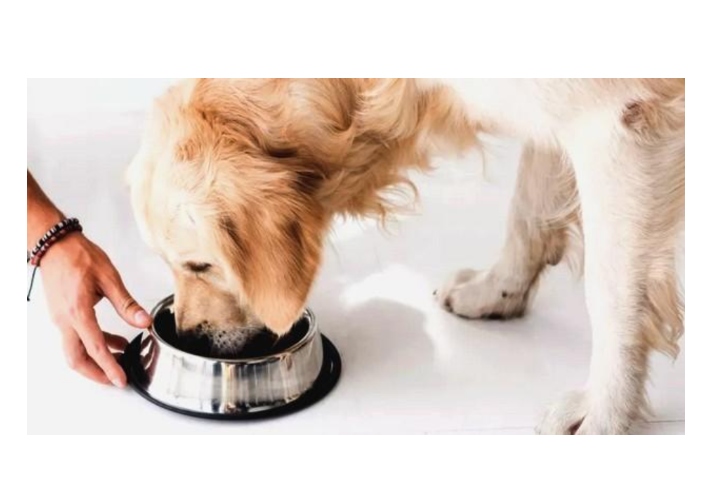 Dogs
Dogs
3+ MIN
19/08/2020
Omega-3 reduces pain and stops osteoarthritis in dogs
An expert in veterinary nutrition points out that some of the problems of osteoarthritis in dogs, such as inflammation or pain, can be managed with a diet rich in various nutrients such as omega-3 Disruption of the normal movement of the joints can cause injury to the various components of a joint. This injury often results in what is known as osteoarthritis (OA), which often leads to physical disability, pain, and a reduced quality of life for the affected pet. OA is the most common form of arthritis and is recognized in humans and all veterinary species. It is often a slowly progressive condition characterized by two main disease processes: degeneration of articular cartilage with loss of proteoglycan and collagen, and proliferation of new bone. In North America, the prevalence of osteoarthritis ranges from 20% in dogs older than 1 year to 80% in dogs older than 8 years. The goals of OA treatment are multifaceted: reduce pain and discomfort, decrease clinical signs, delay disease progression, promote repair of damaged tissue, and improve quality of life. Kara Burns, a veterinary technician specializing in physiology and psychology and president of the Academy of Veterinary Nutrition Technicians, explains how to improve the development of osteoarthritis through diet. And it is that it has been suggested that the best results in dogs with chronic pain due to OA are the result of a combination of anti-inflammatory and analgesic medications, as well as pharmacological treatments to alleviate the disease, but also from other areas, such as nutrition, exercise and physical therapy. In fact, Burns explains that dietary factors can potentially modify some of the underlying processes involved in OA, including modulating the inflammatory response, supplying nutrients for cartilage repair, and protection against oxidative damage. THE IMPORTANCE OF DOG NUTRITION IN OSTEOARTHRITIS "When effective, diet management can help reduce or eliminate the need for conventional medications," says the veterinary technique, which highlights, among some of the elements that should be taken into account in the diet, amino acids or Omega-3 fatty acids. In the case of omega-3s, Burns notes that these fatty acids have been shown to aid in the management of canine OA, and there are studies showing that foods high in total omega-3 fatty acids and eicosapentaenoic acid (EPA ) may improve the clinical signs of canine OA. In the pet food market, products rich in these nutrients are offered, such as those from Dechra's Specific range, which is committed to omega-3 in its diet, specifically of marine origin. Thanks to the use of alternative and sustainable protein sources, such as certified fish and krill, Dechra's diets are high in omega-3, EPA and docosahexaenoic acid (DHA). In addition, omega-3 has other beneficial effects beyond osteoarthritis, as it helps in the maintenance of a healthy coat and skin, favors the development of the brain and eyes and strengthens the immune system, and promotes good heart health . In conclusion, veterinary art believes that nutrition and specific nutrients provide an effective and safe way to control OA in dogs, and that foods high in omega-3 fatty acids have the dual benefit of controlling inflammation and pain while slowing the progression of the disease by decreasing the degradation of cartilage. Author: Animal's Health
 Packaging
Packaging
6+ MIN
11/08/2020
Is it possible to create a 100% Recyclable Packaging?
The oceans receive about 8 million tons of garbage each year. At the same time, knowledge about climate change and the impact (positive and negative) that we generate on the environment has made both companies and individuals worry and occupy themselves with how to reduce the damage they cause to our planet. As we mentioned in the previous article, sustainability and organic are a trend in the Pet Food Industry (and in general, too!). Therefore, in this article we bring you the information you need about packaging and packaging of pet food and sustainability. Is it possible to make a 100% biodegradable wrap / package? Is it economically affordable? What obstacles exist today to achieve it? Will the demand for my products increase? Worth it? We will tell you about it in this article. All of us who are participants in this industry have a role and a responsibility to implement actions to reduce waste, reuse and recycle materials and products, to the extent that our business allows it, to create a more sustainable chain. The increased awareness and involvement of pet owners regarding sustainability and caring for the environment forces the pet food packaging industry to look for more ecological alternatives. What do the referring voices say? Latricia Fry, from Constantia Flexibles, one of the most important flexible packaging companies, affirms that in North America there are already companies that promise to be 100% recyclable or sustainable by 2022 or 2025, and that, consequently, the company she represents has noticed an exponential increase in the order for more sustainable and environmentally friendly packaging. Sean Riley, from the Association for Packaging and Processing Technologies (PMMI), says that pressure and the social demand for more sustainable pet food have led packaging manufacturers to seek options to reduce waste from their production chain and packages. Similarly, it ensures that consumption is leaning towards companies that use good production practices for the environment. Likewise, the research firm Mintel underlines the importance of packaging in the sustainable life cycle of a product, which is why, like food, they should incorporate bio-based materials and increase the incentive to recycle said packaging. How does this sector of the industry receive sustainability? The global reality is that sustainability involves costly and highly innovative processes, and even so, if implemented, there would continue to be cons in terms of the environmental footprint. In addition, companies participating in the pet food production chain have to analyze the impact from several angles; Regarding packaging, they would also have to improve the packages used in the logistics of shipping and distribution of products, trying to choose cardboard boxes and avoid plastic or plastic wrap or covers. What are the main obstacles within the industry? As we already told you, one of the main obstacles in the implementation of more sustainable materials and chains is the cost involved in the implementation of new processes that adapt to the standards of caring for the environment. The second major challenge for producers and manufacturers is the need to find packaging that is safe to maintain the quality and condition of different types of food and candy, and that, in turn, is more sustainable. What solutions are being considered in the medium term? The pioneering companies in implementing more sustainable systems and materials (located mainly in the United States) have begun to develop and implement several alternatives: Some choose to replace polyethylene plastic (made from fossil fuels like oil or natural gas) with green polyethylene - a bio-based plastic made from Brazilian sugar cane. The use of this polyethylene has an extra advantage: the cultivation of this sugar cane uses carbon dioxide and releases oxygen, thus reducing greenhouse gas emissions and reducing its carbon footprint. Another alternative towards sustainability is the generation of flexible packaging that is 100% recyclable in pinch, folding and flat bottom formats. The Constantia Flexibles company has developed an aluminum packaging system with a water-based coating that eliminates the emission of volatile organic compounds. In this way, they would be recyclable in the aluminum recycling chain. How does the context influence the sustainability of the industry? While it is true that each sector and industry must rethink itself in terms of the footprint and negative impact it generates on the environment, it is also undeniable to affirm that any change and transformation that is implemented impacts and depends on other sectors and / or or related industries. With regard to recycling, the key, beyond the pet food packaging manufacturers' improvement intentions, is how local municipalities manage and report on their own recycling chain. Another challenge to create a sustainable system within which packaging can be recycled to a circle of economy and profitability: there must be someone willing to buy the material to use it to make new products. Currently, in Latin America, only 14% of the population has recycling habits. Within the formal and corporate sector, only 2.2% of companies recycle products and materials. Also, most of the few people who recycle say they do not have recycling points or containers for recyclables near their home. These numbers, unfortunately, only demotivate and dismiss the idea of investing in research and machinery to develop more sustainable packages. The most effective solution for the current situation in our country is to educate. Below, we tell you why. What can be done right now? Currently, there are two solutions that are positioned as the preferred among producers; even so, they are still far from perfect: One option is to develop a reusable and refillable container or container. It would be truly sustainable in a circular recycling economy, in which recycled items are reused and recycled over and over again. Its main disadvantage is that, in the short term, it is a rather expensive implementation and the infrastructure and machinery that is used mostly today is not capable of doing it. The second option is to design post-consumer polyethylene recycling programs. However, the challenges of a new adapted packaging design and the fact that it perpetuates the use of plastics demotivate companies. But not everything is negative. There are some actions that can be implemented now, and can lead the way to a more sustainable industry and packaging. So what can be done TODAY for a more sustainable packaging? There are some good practices that can be implemented in our current situation and context to the production chain of packaging for pet food, among them: Increase the recycled content used in the production of packaging and packaging. Use larger containers and boost bulk purchasing to reduce waste and garbage. Prioritize packaging made, to a greater extent, of cardboard, and secondly, of aluminum. Carry out communication and awareness campaigns about the importance of recycling and how it should be done. This last point is essential: when it comes to recyclable packaging (or any object), education is key. People need information and resources on how to recycle and why it is so important to do so, as well as everything that goes into achieving more sustainable packaging. Manufacturers of packaging for pet food that seek to walk the path to sustainability should focus on communicating it through the labels of their products, as well as through their social networks and web pages. In conclusion Recyclable packaging seems to be a great solution to reduce the negative impact of the pet food industry, but it requires a joint effort by the sector and the corresponding municipalities. For sure, starting a strategic communication and dissemination plan is a good alternative for all companies in the industry that want to start this transformation but do not yet have the necessary infrastructure or investment to materialize it in all their products. Tell us what is your point of view in relation to this, we are interested in knowing it! Author: All Extruded
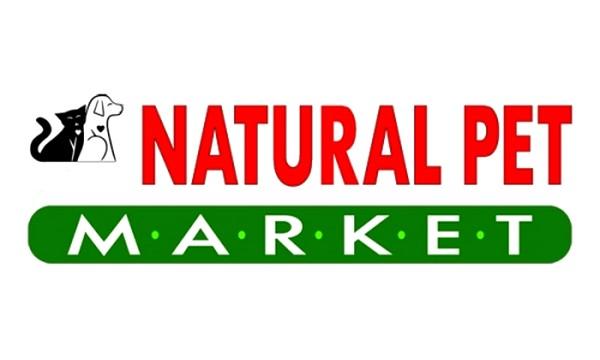 Vegetable Origin
Vegetable Origin
2+ MIN
11/08/2020
Organic and Natural Pet Food Market: Growth, Opportunity and Forecast 2020-2025
The global organic and natural pet food market grew at a CAGR of nearly 12% during 2014-2019. Natural pet food consists of organic ingredients that are free from synthetic fertilizers, pesticides, antibiotics, artificial coloring, and chemical by-products. Organic pet food offers several health benefits for pets, including boosting immunity, reducing skin ailments and allergies, minimizing digestive disorders, improving life expectancy, and maintaining a healthy weight. Based on the texture, the food mostly comes in the form of snacks, treats, kibble, liquid supplements, pellets, etc., available in bags, pouches, cans, and trays of varying sizes and shapes. The increasing demand for organic and natural pet food can be attributed to the growing number of pet ownerships coupled with rising consumer awareness towards pet health. Additionally, rapid urbanization coupled with the high prevalence of family nuclearization has led to the rising adoption of pets, across both developed and emerging regions. In line with this, the elevating consumer living standards supported by their increasing disposable income levels have propelled the per capita expenditures on premium pet care products. The prevalent trend of pet humanization where the pet owners treat their pets as a family member, is also driving the demand for high-quality and organic pet food. Apart from this, the wide availability of natural pet food across several distribution channels coupled with the emergence of e-commerce platforms has also augmented the market growth. Moreover, the rising demand for pet food with customized diets and pet meal plans accompanied by door-step delivery is driving the online sales of pet food. In addition to this, numerous celebrity endorsements along with various awareness programs are promoting the demand for nutrient rich pet food that is healthy and safe for consumption. Competitive Landscape: The competitive landscape of the industry has also been examined with some of the key players being PetGuard Holdings LLC, Newman's Own LLC, Nestle, Evanger's Dog & Cat Food Company, Inc., Lily's Kitchen, Avian Organics, Castor & Pollux Natural Petworks, Yarrah etc Breakup by Ingredient: Natural Organic Breakup by Pet Type: Dog Food Cat Food Others Breakup by Product Type: Dry Pet Food Wet and Canned Pet Food Snacks and Treats Breakup by Packaging Type: Bags Cans Pouches Boxes Breakup by Distribution Channel: Supermarkets and Hypermarkets Specialty Stores Online Stores Others by Research and Markets
 Veterinary
Veterinary
4+ MIN
06/08/2020
Nearly Half of Pets Are Overweight but Few Receive Treatment
Pet obesity is one of the most common medical problems in cats and dogs — more than 40% may be affected globally.
A pet's enjoyment of life involves running, jumping and climbing. Indeed, an overweight body condition can limit a pet's speed, agility and energy for play — resulting in poor quality of life.
We also know dogs and cats who experience obesity are at greater risk of long-term issues such as diabetes, lower urinary tract diseases and arthritis. The latest research indicates that dogs in overweight condition have a shorter average lifespan (up to 2.5 years) than dogs that are a healthy weight.
Yet, getting a pet to reach their target weight is likely a lengthy process — especially because weight loss isn't a linear process. Also, many pets will experience a progressive decrease in their rate of weight loss as their bodies tend to protect and store fat. Therefore, the longer the period of weight loss, the harder it becomes for the pet to lose weight.
This issue is mirrored in weight loss programs. Research by the Royal Canin Weight Management Clinic at the University of Liverpool shows high compliance in the first months: over 80% follow their assigned program. However, commitment declines after two to three months, resulting in only around half of pets reaching their target weight.
Start of life: A critical phase to prevent weight issues
According to a Banfield report, pet obesity has increased by 169% for cats and 158% for dogs over the last 10 years. It also shows that 37% of dogs under 18 months are overweight. The statistics indicate that more challenges arise in pet health when obesity occurs earlier, since pets are spending most of their lifespans with excess body weight.
'We are dealing with a disease that is already common but increasing further in prevalence. It is a lifelong problem, often starting early in life,' said Alex German, Royal Canin Professor of Small Animal Medicine at the University of Liverpool. 'That is why the problem needs to be managed strategically with a focus on prevention, targeting puppies and kittens.'
Veterinarians are crucial for bridging the knowledge gap
Obese pets may not show their discomfort clearly, which is why it is desirable for pet owners, supported by veterinary professionals, to understand their pet's behavior and needs.
Between 44% and 72% of pet owners underestimate the weight status of their pet. Also, very few veterinarians record obesity and overweight issues. Another study by the Liverpool Weight Management Clinic shows that terms associated with obesity and overweight only appeared in 1.4% of vet records, compared with the estimated prevalence of 50 to 60% in the UK. This indicates that the proportion of pets treated for obesity or overweight issues is likely to be small.
At Mars and Royal Canin, we believe vets are a key factor to promote preventive health. It is important to establish early healthy weight management habits for our pets, and it can be as simple as starting a conversation at a clinic!
'Too many pet owners are unaware if their pet is overweight, and as a result their pet's health and quality of life can be severely reduced. As pet professionals, we believe that we have a responsibility to help bridge this gap by ensuring that pet owners have the knowledge to help their pet thrive,' said John Flanagan, Discover Program Manager at Royal Canin. 'To us at Royal Canin, this means sharing knowledge with pet owners through communication campaigns and offering nutritional solutions adapted to each pet's specific needs, all with the help of our partners.'
Simple recommendations to put your pet's health first
In order to have a healthy, happy pet that will enjoy a long life, it is also important to make nutritional and lifestyle changes by:
Providing a carefully selected diet.
Avoiding overfeeding and minimizing extra foods by monitoring food portions.
Weighing our pets regularly with an electronic scale.
Exercising pets regularly — with regard to the amount and type of exercise depending on various factors, i.e., breed, size, age and health status.
Weight management at Royal Canin
At Royal Canin, weight management has been our focus for years. We believe a healthy weight begins with healthy habits, which should begin early in life and continue throughout the pet's life.
Royal Canin has a bold ambition to help reduce the prevalence of pet obesity in every cat by 2025. We will do this by raising awareness on the issue and promoting healthy habits through campaigns, tools and nutritional solutions, all based on science and observation. We also work with our vets and other institutions, such as the University of Liverpool, to gain and share knowledge.
by Royal Canin
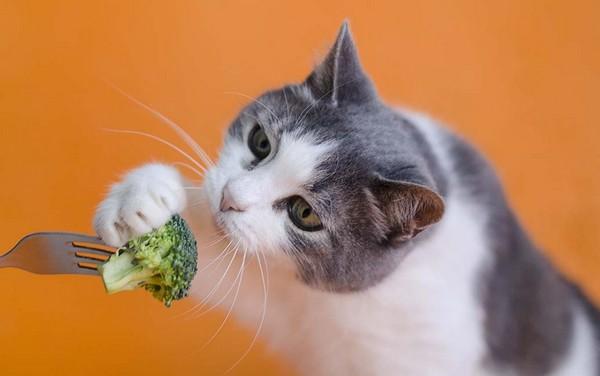 Vegetable Origin
Vegetable Origin
6+ MIN
03/08/2020
What Cat Owners Want in Natural Foods
As cat owners seek the best nutrition possible for their pets, natural diets quickly come into play, and qualities such as safety, sustainability and high protein are sought after.
The natural cat foods category is experiencing many of the same trends as other pet food segments, according to industry insiders. For example, product manufacturing transparency is a top concern among consumers, pet specialty retailers report. 'Locally and ethically sourced, traceability and sustainability are the hot trends,' said Dave Fedorchak, vice president of procurement and research and development for PetGuard, a Sewickley, Pa.-based manufacturer of natural pet foods.
Mary Helen Horn, president of Ziwi USA, an Overland Park, Kan.-based manufacturer, agreed, adding that cat owners 'want clean, safe and sustainable sourcing from countries and companies that are known to be trustworthy.' This focus on safety and sustainability doesn't end with the food itself. Even pet food packaging is on the cat-owning customer's radar.
'With the increase in global sustainability awareness and efforts, a large majority of customers prefer packaging that follows the reduce, reuse, recycle methodology,' Horn said. 'Many pet parents around the world want to see less plastic and more packaging that is recyclable or has multiuse functionality.'
However, the desire to protect the environment does not trump demand for food packaging that is easy to open and store, insiders said. 'They're looking for packaging that is recyclable and functional,' Fedorchak said. 'Our food comes in cans that are easily recycled, and our dry food bags are resealable, which means they can last on the shelves after they're already opened.'
Taylor Foster, store manager at Bon Pet Supply in Colorado Springs, Colo., reported, 'Tetra Paks are increasing in popularity because of their earth friendliness and the fact they can be sealed easily for storing until the next feeding.' Lisa McKitrick, co-owner of Boofy's Best for Pets, a pet supply store in Albuquerque, N.M., said that, over the years, wet food pouches have become quite popular.
And cat owners shopping at The Natural Pet Outlet's two Connecticut locations appreciate easy-open cans, said partner Ray Arabia. 'A lot of customers are looking for pop-top containers or a block of meat they can cut and refreeze themselves,' he said. As for the contents of the packages, pet owners are seeking minimally processed, natural ingredients, high-protein content, variety and function. 'Pet parents are doing more research and getting better educated on the nutritional needs of their cats, so they are buying higher-quality products that contain more meat, without all the fillers, gums and binders,' Horn said.
Chanda Leary-Coutu, director of consumer experience for Wellness Natural Pet Food, a brand of Tewksbury, Mass.-based manufacturer WellPet, reported seeing 'cat parents [looking] to experiment with trending ingredients,' such as incorporating grains into cats' diets and seeing 'wholesome ingredients that they'd eat themselves, like flaxseeds, carrots and cranberries.'
At Bon Pet Supply, natural cat food shoppers want lower-carb diets.
'Grain free versus grain in doesn't seem to be as big of a concern as it used to be, as long as the ingredient panel reflects a wholesomely sourced, high-protein-content, low-carb diet,' Foster said. 'Limitations in ingredients is also popular, where people are asking for only one category of protein—poultry or fish or red meat exclusive.'
Ultimately, owners want a healthier cat, Arabia said. To achieve this, he finds more customers switching from dry food to wet food, and then migrating to raw. 'They want a food that won't cause UTIs or obesity,' he said. 'They want fewer vet bills, and they think more natural and raw food will do that.'
Education - A Knowledgeable Staff Better Educates Customers
Nutrition is a critical factor for health and longevity, so pet specialty retailers and natural pet food manufacturers place a huge emphasis on education.
'[It's] key to a consumer's understanding of why natural foods are so beneficial to pets,' said Chanda Leary-Coutu, director of consumer experience for Wellness Natural Pet Food, a brand of Tewksbury, Mass.-based manufacturer WellPet. 'Learning about the key health and overall wellness benefits that natural recipes have over other products that may contain fillers and artificial components is likely to be the reason why consumers choose to purchase natural recipes over anything else.'
Because of this, both manufacturers and retailers make consumer education a priority. The first stop is store staff, industry insiders said. 'We want our retail partners to be as passionate about our food as we are, so we've put in place store associate trainings for their employees so that they can understand all things PetGuard,' said Dave Fedorchak, vice president of procurement and research and development for the Sewickley, Pa.-based pet food company. 'That way, if someone has a question or concern about our food formulas, they'll be prepared with the information to not only assuage concerns, but to recommend our food.'
Some manufacturers offer in-person training, while others provide digital options or a combination of both.
'We partner with our retailers to provide in-person training as well as our new online training module that educates retailers and their team on the benefits of a natural cat food diet and proper pet nutrition,' said Mary Helen Horn, president of Ziwi USA, an Overland Park, Kan.-based pet food manufacturer.
Video is a significant communication technique for consumers, said Lisa McKitrick, co-owner of Boofy's Best for Pets, a pet supply store in Albuquerque, N.M., so she asks brand reps 'to participate in live video broadcasts to talk about their foods.' Still, video and other digital options do not eliminate the importance of face-to-face communication, retailers said.
'An educated sales staff is the most effective way to introduce customers to natural diets,' McKitrick said. 'And we expect our team to speak knowledgeably about the foods we offer as well as pet nutrition in general.
'We want all of our customers to be able to read an ingredient panel and know what constitutes a 'good' ingredient and a 'bad' ingredient,' she added. 'Decisions should never be made based on a cute commercial or misleading packaging, but that's what influences many purchases.'
Testimonials from staff educate customers and build trust and repeat business. 'We share our personal experiences with them about issues we've had with lesser-quality foods and hope they understand that we aren't just 'making a sale' when they come in,' said Taylor Foster, store manager at Bon Pet Supply in Colorado Springs, Colo. 'We want what is best for their cats, so we suggest and recommend things we actually think are helpful and good. This helps build trust between us and them, and then they are more comfortable asking for help and more inclined to take our advice.'
Defining the Terms: Juggling Organic and Natural
In the natural pet food category, there remains much confusion. Because the term 'natural' is unregulated, definitions can vary and remain subjective, industry insiders said. Add in the term 'organic,' and customers can get overwhelmed.
To simplify things, Dave Fedorchak, vice president of procurement and research and development for PetGuard, a natural pet food manufacturer in Sewickley, Pa., describes the terms this way: 'Organic diets refer to the way that produce and livestock are grown and raised, whereas natural is food without artificial ingredients, coloring, flavors or preservatives.'
Sometimes, consumers confuse the two.
'Some customers think that 'natural' is synonymous with 'organic' and will come in asking for organic food,' said Lisa McKitrick, co-owner of Boofy's Best for Pets, a pet supply store in Albuquerque, N.M. 'Then they get sticker shock!'
To help customers with their sticker shock, McKitrick spends time educating customers on the differences.
'Organic cat foods are made from ingredients that have been raised or grown without synthetic pesticides, synthetic fertilizers, antibiotics and added hormones,' she said. 'The foods will also be GMO free. At least 95 percent of the ingredients in the food must be organic for the food to be certified and labeled as organic.
'When the difference is explained, most realize that 'natural' is what they are seeking and that there are plenty of excellent options for almost any budget,' she added.
Helping consumers understand natural foods can mean breaking down misinformation.
'The priority and challenge in educating pet parents about natural food is ensuring they have access to both appropriate and factual information,' said Mary Helen Horn, president of Ziwi USA, a pet food manufacturer in Overland Park, Kan. 'In today's age of the internet and access to so many social media sites, we have encountered and spoken to so many pet parents who have been misinformed or misguided on the principles of feeding a natural food with natural ingredients.'
by SANDY CHEBAT
 Vitamins
Vitamins
3+ MIN
30/07/2020
Primary Yeast Solutions are Helping Boost Pet Health and Well-Being
Yeast-based ingredients are playing an increasing role in pet foods premiumization as a source of improved health and well-being for pets around the world says Rodolphe Rabot. 'Yeasts have been widely used in pet foods in the past to assist cat food palatability and protein supply,' said Dr Rabot. 'What we're seeing now, however, is a growing interest in the value and impact of yeasts in boosting immunity levels in pets and helping to improve gut health.' Current industry statistics for pet food launches in the last 10 years show yeast-based ingredients are declared and valorised in only around 20% of new products, although with clear evidence of a growth in usage taking place across all segments and global markets. While the increasing use of yeasts in pet foods is well accepted by industry specialists, Dr Rabot believes many aspects of today's 'yeast revolution' aren't well enough understood by users. 'All yeasts are not just a yeast! The family is extremely large, involving several thousands of different strains,' he said. 'In looking at the future use of yeast strains in pet foods, therefore, we are potentially at the beginning of a huge change.' A key question for yeast product users is whether or not to work with primary yeast ingredients, which have been specifically selected for pet purposes, or to use second hand yeasts, such as spent yeasts which have already been used in the brewing industry, or similar. 'Spent yeasts come from an initial industrial process and are then re-used as by-products of the beer or ethanol industry, or similar,' said Dr Rabot. 'Residues of such processes are passed to people who are trying to recover some money by creating a cheap end product. I say cheap because these products use yeast strains which have already been depreciated by their original use. 'Even after industrial by-products are processed again, a lot of variability exists in the spent yeast batches which are received, while blending by collectors to minimize inconsistencies fails to deliver health guarantees. In short, it's a playground!' Speaking in his role as global species manager for pets and horses for Phileo Lesaffre Animal Care, France, Dr Rabot said that, as a producer of yeast-based items for use for humans and domestic animals, Lesaffre has always been highly focused on the way it selects yeast strains and the benefits which it can deliver to pets. 'Our strains are selected to help boost the health of pets while spent yeast strains are selected to make beer or ethanol,' he said. 'The first direct advantage we look for in pet food, is to deliver consistent and constant health benefits. In that context, we have carefully developed a yeast 'library' containing thousands of species, constantly working on the basis that the more strains you have to choose from, the more chance there is of finding something which is in line with our targeted benefits, such as boosting disease resistance, immunity, microbiota biodiversity and so on.' Lesaffre has been focusing on primary yeasts for 160 years, driven by the fact that they offer much higher activity levels than spent yeasts, many of which will have been through eight or nine beer processes. Primary yeasts, in contrast, can be selected and grown under fully controlled processes and quality standards to have higher bioactive compound content than spent items. As a result, they bring much more value to pet foods, while insuring safety and complete traceability. 'Recent studies in pets have also confirmed that some selected strains of live yeast should be considered, alongside some live bacteria, as real probiotics with proven health benefits when given orally at the right dose,' said Dr Rabot. 'Additional yeast autolysis and purification processes enable selected yeast fractions to be delivered with a high concentration in certain active components, such as Mannans to bind pathogens, betaglucans to modulate innate immunity or nucleotides to aid cell renewal. 'My last word! Natural primary yeasts are the basis of the health promise that our beloved companion animals deserve and that pet parents are expecting. In short, primary yeasts are more than an ingredient, they're the solution.' by Dr Rodolphe Rabot, DVM Global species manager for Pets and Horse • Phileo by Lesaffre
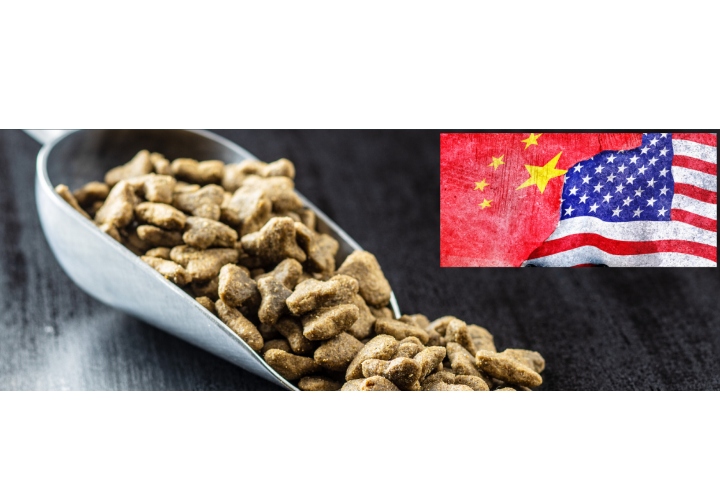 Market Information
Market Information
14+ MIN
28/07/2020
Pet Food Reality: The Problem Isn’t China, It’s Us
You walk the aisles of your local pet store, or maybe you shop online – and you notice that your pet's food, treats and supplements are marked 'Made in the USA.' You think that this means it is free from any foreign ingredients, and therefore safe – right? Wrong. In fact, various ingredients can be sourced from anywhere in the world, and then assembled (made) in the USA. And, suddenly we see how deceptive that 'Made in the USA' claim can be. Where It All Began: 2007 Melamine Recall China immediately comes to mind as a danger when we think about pet food and supply sourcing. This is because the 2007 melamine pet food recall was a rude awakening for pet owners in the USA. Prior to 2007 not many pet owners thought about where their pet food, treats or ingredients contained within them came from. In fact, most recalls the decade prior were small in comparison and limited to excess vitamin D, methionine and aflatoxin contamination.[1] At the time, the melamine recall was the largest and most widespread recall of pet food in history – resulting in over 5,300 different products being removed from American shelves and least four-thousand pet deaths.[2] The biggest take away from this recall was that it included over 150 brands – those from grocery channel all the way to 'premium' brands. Showing that many companies sourced the same ingredients from the same places and utilized the same manufacturers despite what their marketing claims said. This is ultimately what prompted pet owners to start asking questions. Melamine is an industrial chemical with uses ranging from a binding agent, flame retardant and as a polymer for utensils and plates. It has also been used as a fertilizer, although it is also not approved for use as such in the USA.[3] For context, melamine-related compounds in the same family include cyanuric acid, ammeline, and ammelide. Melamine and related compounds have no approved use as an ingredient in animal or human food in the United States.[3] Just knowing these facts, the thought that melamine was even introduced into the pet food supply is unsettling and it was only by sheer chance that these products did not make it into the human food supply. The short version of the 2007 recall is that wheat gluten and rice protein were intentionally combined with melamine for its high nitrogen content. Higher amounts of nitrogen can cause the protein content of an ingredient to test higher than it actually is. In addition, cyanuric acid was also present and this combination of melamine and cyanuric acid is likely the reason the recall was so deadly – not the melamine on its own.[3] This entire incident fueled the American pet owners obsession for 'Made in the USA' products. But are products that claim to be made in the USA void of ingredients from China? Maybe not. Made in the USA – Sort Of The melamine recall gave rise to the 'Made in the USA' mark on pet food packaging, and the current Covid-19 Pandemic is fueling another wave of consumer demand for these products. But what many consumers and pet owners don't realize is that this term does not mean sourced in the USA. Instead it means an American company could make pet food on American soil, but source ingredients like vitamin and mineral mixes from outside the USA and still put 'Made in the USA' or 'Manufactured in X US state' on the label. Further, many manufacturers will claim – at least verbally, that they do not source any ingredients or vitamins from China. So, is this actually the case? No, because most pet foods on the market contain a vitamin premix, at least in part that comes from outside the USA, which many include China. More on that in a bit. The Federal Trade Commission (FTC) does oversee 'Made in the USA' claims – either expressed or perceived. This claim according to FTC standards means that all, or virtually all of the product must be made in the USA and contain no or negligible foreign content.[4] According to the FTC standards, sourcing for foreign vitamin and mineral mix would be considered 'negligible' and therefore allow a pet food company to use 'Made in the USA' on the label so long as a significant majority of the remaining ingredients were indeed US sourced. One grey area here is that 'negligible' is not explicitly defined. Further, negligible doesn't necessarily mean a small amount of the final product because the FTC also takes into account the economic factors of where ingredients are processed and where the final product is processed.[4] Simply, a fair amount of ingredients could be sourced outside the US, but the economic impact of processing the final product could potentially outweigh the outside sourcing. Misleading Consumers Evidence of how misleading some companies could be can be seen in the recent case Weaver v. Champion Petfoods USA Inc., et al. The plaintiff in this case alleged that Champion Petfoods deceptively marketed their dog food products via claims such as 'biologically appropriate', 'fresh', 'regional', and 'never outsourced'. In addition, he claimed that Champion should have to disclose trace amounts of BPA and pentobarbital – just for example.[5] In short, the court dismissed all complaints because Champion Petfoods asserts that 'biologically appropriate' is a nutritional philosophy – not a nutritional statement (aka a marketing tagline). Champion also asserts that they did not intentionally add BPA or pentobarbital to their foods – and also never warranted their products were free of these contaminants which releases them from any liability. While rulings on all complaints favored Champion – it does not absolve them of the significant issues that have been exposed. It also doesn't negate the fact that this is a loss for consumers who expect transparency and truth in what they are buying for their pets. The outcome of this case just proves the point that many of us in the industry often make: most pet food companies are marketing companies first, pet food companies second. Ultimately this decision reinforces that manufacturers are not responsible for listing each and every material that may make its way into a final pet food product, nor are they required to be fully transparent on where and how ingredients are sourced.[5] It also shows that many companies are not required, nor do they satisfactorily test inbound ingredients or outbound product for adequacy. Instead it provides examples of many of the marketing loopholes that manufacturers use to give the perception that the ingredients are superior, or sourced in one way over another – when in fact they are no different than other manufacturers. Manufactured in the USA Loopholes: One loophole that does not appear to have any regulation governing claims or advertising involves a phrase such as 'Manufactured in our US facility' and/or 'Manufactured in our Kentucky Kitchens'. Simply naming a US state is a gray area since this statement would be true, but it does not point to the sourcing of the ingredients. This is extremely deceptive to the consumer who is unaware of these details. Regardless, companies such as Tyson, Fromm, Wysong, Merrick, Wellpet (Wellness, Eagle Pack, Holistic Select) have had lawsuits dismissed as a result of this gray area – or due to gray areas under the FTC standards.[6] There are multiple vitamin premix companies in the US that also source individual components from outside the US, including China. The way they get around that fact is they mill or blend the vitamin premix in US facilities and simply act as if as if 'manufactured' is the same as 'sourced' in the USA. Regardless, sourcing of a particular ingredient from the US or otherwise does not guarantee safety, and therefore doesn't discount the need for adequacy or contaminant testing. Understanding Origin: If pet food or vitamin premix companies advertise 'made in the USA' they should be willing to provide a certificate of origin for each of the ingredients on their label. Interestingly, most companies we surveyed were not willing to provide this information. Opening the discussion about vitamin premix sourcing opens up another complicated layer of pet food industry safety, sourcing and transparency. Although, as discussed, a certificate of origin for a final pet food or premix product would not ensure individual ingredients did not originate from outside the country of origin. For example, if a vitamin premix is formulated and combined in Germany – it can still have individual vitamins that are sourced from China or otherwise. The certificate of origin for the final product would say Germany. This is because the country of origin is defined as the country where the last substantial economically justified working or processing is carried out. This is the very reason why pet food companies may not understand their product contains ingredients from China – although ignorance should not be an excuse. Do Any Vitamin Mixes Come From the USA? As of the date of this article there is only one vitamin mix company claiming to be 3rd party verified to not source any ingredients from China.[7] This sounds good, however it is simply marketing because there is not an authority providing benchmarks for determining what 3rd party verification in this context means. In fact, there are several companies that perform the verification by sourcing and auditing. There are several non-China sourced vitamin premixes for pet food available in the market, but there is only one that advertises it. However – one must realize that there are some ingredients to these premixes that only come from outside the USA. For example, sources for L-carnitine only come from China or the Czech Republic, meaning that if a premix contains L-carnitine, that premix is not 100% USA sourced – despite any marketing claims. The same goes for some other vitamins and minerals as well. The above considered, there are reputable premix companies that have been sourcing ingredients from places other than China both before and after the melamine recall. Some even make the ingredients themselves ensuring control over the process. These companies are the ones that continually receive awards and recognition for their blending, sourcing and commitment to quality each year. These companies also have marketplace longevity showing an extensive safety record. Simply, they don't have to advertise their USA sourced, or non-China sourced ingredients because their reputation and performance speaks for itself. Vitamin premix companies that hang on advertising claims without verification, performance or data to back their claims are likely a disaster waiting to happen. This is something that pet owners and pet industry professionals should be cognizant of. We've learned that most US pet food companies who claim not to use ingredients from China, aren't exactly transparent. For example, when asked specifically if companies source any ingredients from China, if they respond they will usually say one of two things: that their ingredients are sourced 'globally' (spoiler alert: that includes China); or claimed that information was proprietary. The proprietary response is a problem because companies will use this to hide certificates of origin for various ingredients, or the premix itself (China or elsewhere), or the fact that they do not perform adequacy testing. What the big miss here is that not all ingredients from China are bad. Yes, I said it - not everything that comes from China is dangerous – so long as a company is verifying safety and adequacy. In fact, 'USA' made or sourced should never be an excuse to not adequately test products. So Why Does 'Everything' Come from China? The reality is that China actually owns and controls a vast majority of the vitamin and supplement market. The same goes for human vitamin products as well. Chinese companies were able to see the consumer trends toward health and wellness decades ago and purchased a large amount of businesses in this sector. As with anything else there are bad players and there are some that go above and beyond – even exceed US quality in some instances. It's common knowledge that some industrially produced vitamins and supplements from China pose significant risk. In addition, we know that this area is also a significant culprit for counterfeit medications. The concerns from this area are legitimate and created significant issues for countless people across the globe. However, these do not negate the fact that some legitimate supplies largely come from China or may be superior to others. While high quality ingredients coming from China may actually sound counterintuitive, we often forget that Traditional Chinese Medicine (TCM) dates back at least 23 centuries – likely much further. One of the foundational concepts of TCM is the balance of energy, and includes the use of herbs, whole foods and other modalities to promote a healing effect within the body. While my description is oversimplified, the point is that those within the Chinese culture who embrace the philosophy of TCM believe in and understand the importance of high quality, clean and well sourced raw materials and supplements. In other words, obtaining vitamins, minerals and supplements from reputable sources within China, or elsewhere, and then verifying quality and purity with 3rd party testing for use in pet food and human supplements can be safe. The Problem Isn't China In fact, the problem is that we are focusing on the wrong target. This argument is often used to disguise significant issues of our own. Instead of looking to place blame on one particular thing we should be seeking to hold ourselves and others accountable. Instead of simply blaming China, we should realize that the problem is actually twofold: Lack of raw ingredient testing/verification by American pet food companies The lack of legitimate transparency from American pet food companies regarding this testing Poorly sourced and contaminated ingredients can come from anywhere. We have allowed those within other countries and the US get away with providing subpar and dangerous raw materials for a very long time. These adulterated ingredients could be by error, accident, be innocent or intentional. As discussed earlier, incidents have originated from the USA as well as China. Instead, we should be asking pet food companies how they ensure the safety of their ingredients and product as a whole. Those questions include: Do you inbound test all ingredients for pathogens, toxicants and to ensure the nutrient value is correct? This question is important because it identifies whether or not a company has processes and procedures in place that would have prevented issues like the melamine incident and the recent Hill's vitamin D recall. The pet food company or more likely the manufacturer that makes their products should have a Global Food Safety Initiative recognized 3rd party food safety certification (i.e. SQF, BRC, etc.). These certifications verify they follow procedures they have in place ensuring adequacy. Do you conduct a 3rd party nutrition analysis on all of your finished products? If the answer is yes, follow up questions should be: do those products meet an AAFCO nutrient profile? Are you willing to provide a copy of that analysis? Note that most companies are deceptive and provide 'target analysis', which is what is predicted – not necessarily representative of what is in the finished product. Be careful with terminology here. In addition, beware of the word proprietary – this does not hold a strong argument and may be a tactic to hide lack of testing, or inadequate testing. Most companies we surveyed either answered 'no' or that this information was 'proprietary'. Do you conduct 3rd party digestibility studies for each of your formulas? If the answer is yes, for any number of their formulations you should also ask if they make those publicly available. Again, proprietary is often used when this question is asked and that should be a red flag for any pet owner or pet store owner. Digestibility studies, or testing involves feeding a predetermined amount of the formula being tested to several dogs for 14 days. Then the stool is collected and analyzed to determine the percentage of macronutrients and micronutrients absorbed compared to what was fed. This process does not involve any invasive procedures, inhumane conditions or otherwise harm to the animal. Again, most of the companies we asked either refused to answer, claimed the information was proprietary or indicated they do not perform this test. So in short, this means companies who don't perform digestibility trials have no idea what the actual calorie content, or digestibility of their food is – meaning that your pet is ultimately the one being experimented on. Keep in mind that digestibility and typical nutrient analysis mean nothing without the other. Digestibility shows the amount of nutrients absorbed. The analysis shows the amount of nutrients contained within a product. Do you source any ingredients from China? Are you willing to provide certificates of origin? As we discussed, ingredients from China are not necessarily bad as long as they are well-sourced. Also, we now know that companies can and should be able to verify quality and purity via analysis and contamination testing of ingredients coming into their facility. Do you complete an analysis of your final product to ensure the formulation is correct and ensure there are not any contamination issues? Again, if companies were analyzing their final product both for nutritional adequacy and contaminants many of the memorable recalls and pet food scandals could have been prevented. Same examples apply – the melamine recall, the Hill's Vitamin D recall and it's also highly likely the dilated cardiomyopathy (DCM) and grain free debacle would never have amounted to the mess it has with these quality control measures in place. In other words, if companies were able to 3rd party verify that their foods contained required nutrients at appropriate levels and that those nutrients were digestible then grain free foods, taurine deficiency or other factors would not have been 'blamed' for DCM. Summary Ultimately, dangerous ingredients and products can come from anywhere. Believing that because something comes from the USA provides assurance of safety is arguably irresponsible. It's also arguably reckless for companies to advertise USA made/sourced products in an effort to provide perception of transparency. It's not a matter of if another recall will happen if companies don't have solid quality control in place – it's a matter of when, and how big or deadly that recall will be. In the wake of COVID-19 we have an opportunity to hold all companies to a higher standard by asking questions in order to evolve the status quo. Now that we understand that it is highly likely that some portion of your pet food is sourced from China, and that ingredients from elsewhere could also carry risk – and highlights that these risks won't go away. Instead, it's up to us to ensure we're supporting companies who are doing the right thing. References: Rumbeiha W, Morrison J. A review of class I and class II pet food recalls involving chemical contaminants from 1996 to 2008. J Med Toxicol Off J Am Coll Med Toxicol. 2011;7(1):60-66. doi:10.1007/s13181-010-0123-5 Pet Food Recalls Spring 2007 - VIN. Accessed July 16, 2020. https://www.vin.com/AppUtil/project/defaultadv1.aspx?id=5715799&template=ContentOnly Medicine C for V. Melamine Pet Food Recall - Frequently Asked Questions. FDA. Published online November 3, 2018. Accessed July 13, 2020. https://www.fda.gov/animal-veterinary/recalls-withdrawals/melamine-pet-food-recall-frequently-asked-questions Complying with the Made In USA Standard. :42. Judge Dismisses Deceptive Labeling Claim Suit. Accessed July 18, 2020. https://www.natlawreview.com/article/deceptive-labeling-claims-based-trace-amounts-sent-to-dog-house?fbclid=IwAR3Qk40CojVyUFqFFozxkdcG0lsVlRBiGgd_3ompZ_5EUORUKMGGB3WkMIQ More phony 'Made in the USA' pet food claims under attack; Multiple class action lawsuits filed | Poisoned Pets | Pet Food Safety News. Accessed July 17, 2020. https://www.poisonedpets.com/lawsuits-accuse-pet-food-makers-over-phony-made-in-the-usa-claims/ Non-China sourced vitamin premix 'first for North American pet food industry.' Accessed July 14, 2020. https://www.petfoodprocessing.net/articles/13636-non-china-sourced-vitamin-premix-first-for-north-american-pet-food-industry By Nicole Cammack
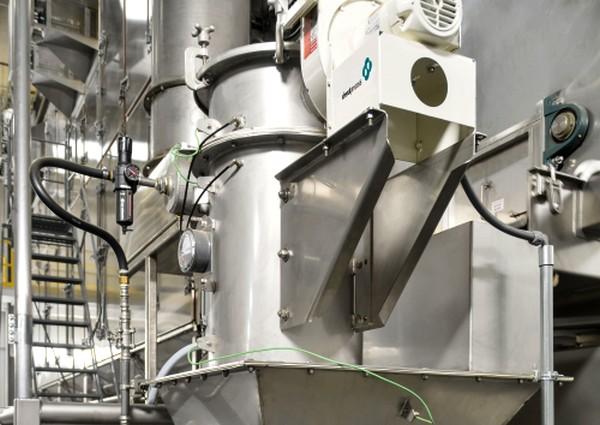 Conveying Systems
Conveying Systems
2+ MIN
27/07/2020
E-finity Pneumatic Conveying System is Designed for Stability and Reliability
Schenck Process E-finity® is a patented continuous dense phase convey system for fragile materials.
Precise pressure monitoring and airflow corrections allow the system to operate efficiently under all conditions, while gently inducing materials through the convey line in slug form. E-finity® is ideally suited for granular and pelleted materials, and has proven itself on many pet food industry projects.
Unique E-finity® air controls can employ a single air source to operate 2-3 different systems simultaneously. The result is a significant cost savings in both equipment and installation, with continued savings in operation and maintenance moving forward.
Schenck Process' ability to design, size, sell, fabricate, and integrate other OEM processes as well as installing and providing ongoing support delivers full control. As a primary equipment manufacturer, Schenck Process manages production schedules for faster lead times on highly engineered, custom-built systems. The end result is a predictable, efficient, and effective material handling process.
Contact Schenck Process to schedule a full-scale test to quantify the energy requirements and degradation results for your specific products.
Operating for over 130 years, Schenck Process has engineered cutting-edge technologies and solutions across the bulk material handling spectrum, delivering unmatched precision and accuracy for dry powder pneumatic conveying, mixing, blending, milling, sifting, screening, weighing and feeding. Additionally, the group provides highly efficient air filtration systems for dust collection applications.
Through its integration of the Kemutec, Mac Process, AccuRate, Raymond Bartlett Snow and Stock Equipment brands, Schenck Process delivers a unified process solution for customers in every corner of the world.
by Schenck Process
Phone: 816-891-9300
E-mail: [email protected]
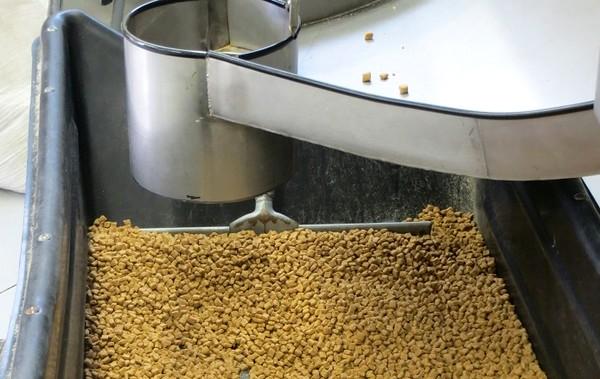 Market Information
Market Information
2+ MIN
24/07/2020
Mexican Pet Food Production had only small drop in May
After record double-digit growth in March and April, pet food production volume in Mexico declined slightly. Earlier reports on pet food volume production in Mexico signaled a historical peak in March 2020, with an increase of 19% in annual terms. In April, at an early stage of the COVID-19 pandemic in Mexico, pet food volume production rose again 18.6% in annual terms, according to the INEGI (National Statistics Institute). Meaning, the pet food market saw two consecutive months of double-digit volume growth. However, as expected, such a pattern was not sustainable as the lockdown restricted the visits of millions of consumers to supermarkets and other outlets, thus hindering sales of pet food. Accordingly, INEGI recently reported that in May 2020, pet food volume production dropped 1.4% in annual terms. Although June results are not yet available, experts estimate that pet food production will register another weak month. COVID-19 impacting pet food consumption more than production Such a slight decrease in pet food production is unremarkable compared to other industries that have experienced considerably larger contractions. More importantly, such production results in the past months confirmed that the COVID-19 pandemic is impacting the Mexican pet food market mainly on one front: consumption. Contrarily, on the production side, most pet food companies continued their regular operations, probably with just some production stops for a few days or even weeks. What can we expect in the coming months? As Mexican consumers return to the new normal, consumption of pet food may recover sooner rather than later. Yet, as the pandemic is still uncontrolled and new COVID-19 cases are surging every day, it is also likely that Mexican authorities decree further lockdowns, particularly in areas with a large number of new cases. With further lockdowns, the industry might get hit again, but not considerably. The negative effect on the pet food industry will not be as bad as on other industries and the overall economy. And this is good news. by Iván Franco Pet food Industry
 Market Information
Market Information
4+ MIN
23/07/2020
Tomra Food Opens New Regional Headquarters in Latin America
New premises, with Customer Experience Center and Regional Training Hub, will strengthen the customer support provided across Latin America by TOMRA Food, Compac, and BBC Technologies
TOMRA Food has opened new regional headquarters to enhance its support of food processors and packers across Latin America. The new purpose-built base, in Santiago, Chile, means that TOMRA Food and its two sister companies, Compac and BBC Technologies, now all have a strong presence in the region, which contributes significantly to the global supply of fruits, nuts, vegetables, potato products, grains and seeds, dried fruit, meat and seafood.
Located in the ENEA business park in the Pudahuel area of Santiago, the new headquarters are close to the city's international airport for easy access for customers from all over Latin America. The 810 square-meter, two-story building adds to the premises BBC Technologies has been operating in Chillán for 10 years with more than 20 employees.
The new building accommodates offices, a meeting room, a spare parts store for greater spare parts stock, and a test and demonstration area that serves as a Customer Experience Center and Regional Training Hub. These facilities and activities are creating local employment opportunities.
Michel Picandet, Head of TOMRA Food, commented: 'TOMRA Food is growing in Latin America, as it is elsewhere in the world, and Chile is the perfect location for expanding our presence here. The new regional headquarters put us closer to all our Latin American customers to ensure they receive the best resources, service and support. This large facility hosts both Service and Sales personnel, affirming our commitment to the future in this region.'
Ken Moynihan, CEO of Compac, said: 'Opening our new regional headquarters is another step forward in providing local access to our global network of training, technical expertise and services across the whole Latin American region, which exports a significant portion of the global trade in fresh produce. Fresh produce companies are looking to supply their customers 365 days per year, so they need to secure high-quality supply from the southern hemisphere. And to succeed in this high value market, exporters need the best packing lines, which is where we add value to their business.'
The headquarters' spacious demonstration area makes it possible for potential customers to test machines with their own samples of produce. Latin American customers who previously wanted to do this typically had to make the longer trip to TOMRA's premises in California. Jacinto Trigo, Compac's Latin America Regional Director, said: 'Our sorting and grading technologies are so powerful, because they can inspect the product externally and internally, that sometimes people have to see the results for themselves to believe them!'
The demonstration room in Santiago currently hosts five optical sorting machines: TOMRA 5A, TOMRA 5B, TOMRA 3C, TOMRA Nimbus BSI+, and Blizzard. In the upcoming months, customers will also be able to test here a Compac Single Lane Sorter with Spectrim, UltraView, and Inspectra inspection systems.
Compac customers from Argentina, Brazil, Chile and Peru are already expressing interest in testing these machines, with fresh produce as varied as apples, avocados, citrus fruits, kiwis, mangoes, round fruits, and stone fruits.
Johan Germeys, Regional Sales Manager LATAM, TOMRA Food, said: 'We have already delivered many tests for customers on a wide variety of produce – fresh and IQF berries such as strawberries, raspberries, blueberries and blackberries, IQF grapes, green beans, nuts, almonds and seaweed – and on every occasion, customers have been impressed by the results.'
If customers are unable to visit Santiago because of COVID-19-related travel restrictions or safety concerns, TOMRA makes arrangements to hold tests with online demonstrations. TOMRA's team is also continuing to work closely with customers despite the pandemic by holding remote meetings and making training tools available online, eliminating the need for personnel to make any unnecessary trips.
Thomas Molnar, Head of Global Sales at TOMRA Food, said: 'A further benefit of the new headquarters is that people from all three of TOMRA's food-related brands are now located in the same country, working more closely together and exchanging information and ideas. This is going to benefit customers by giving us an even better understanding of their operational challenges, ambitions, and agricultural trends in the region. This is important because Latin America is such a big source in the global supply chain, and still developing.'
TOMRA Food also has regional headquarters in the USA, China, and South Africa, global headquarters in Belgium, and 32 regional offices around the world.
For further Information you can contact :
Marijke Bellemans - [email protected]
Marketing Communications Manager
M: +32 (0)476 74 19 18
 Market Information
Market Information
6+ MIN
22/07/2020
I dare you!
"I DARE YOU"
"- I DARE YOU! - This is the title of a book written in 1931 by William H. Danforth, founder of PURINA, and this article for PET FOOD BRAZIL Magazine that talks about the book is a tribute and a challenge to all people. who work in animal feed factories in Brazil.
But before talking about the message of the book, let's go back a little to those times, in the year 1894. At that time, the city of Saint Louis-Missouri on the banks of the Mississippi River was a must-see for anyone wanting to travel west. North American. The difficult journey from east to west was made by pioneers in horse caravans and mule carts, and Saint Louis was a refueling point for men and animals.
Soon, Mr. Danforth saw an opportunity to provide more food, safe and affordable for these animals. Corn that used to be the trade in the region was often dangerous due to the presence of fungi. Oatmeal was nutritionally safer, but it was much more expensive than corn.
By better handling, drying and storing corn, and by mixing with oats, the first concentrate for horses appeared: EL OMOLENO History says the slogan was: "Safer than corn and cheaper than oats"
This was the beginning of the company that became the largest in the world in the field of animal nutrition, and that really established the beginning of nutrition techniques, processes and principles for the most diverse animal species. The company was founded in January 1894, on the Mississippi River, in the city of St. Louis, Missouri, by Dr. William H. Danforth with the name of Robinson-Danforth Commission Company.
He began selling concentrated feed from Omolene, the first commercial feed for horses and mules, which at the time were animals used as means of transportation. The first products were mixed with a shovel and sewn to deliver in 175-pound (80-kilogram) bags at the new Doze e Gratiot factory located in the city of St. Louis.
The food business continued to grow, aided by the popular phrase, "Purina: where purity is sovereign." In 1902, the company name changed to Ralston Purina Company, adopting the traditional world-renowned red square logo (chessboard). The brand is quickly established. It begins to appear in everything related to food and nutrition.
PURINA
Two years later, at the St. Louis World's Fair, the company begins to gain a reputation for promoting innovative products, gently handing out shopping bags with its new corporate logo.
The first commercial dog food was created in 1860, by an American Entrepreneur named James Spratt. On a trip to London, Spratt saw the crew leave the remains of a common cookie at the time, which were eaten by dogs waiting on the docks, made with flour and water, these cookies were used on long trips because they are not perishable. and very practical.
Spratt imagined that dog handlers might be interested in something with similar characteristics, given the difficulty of storing and preserving fresh food, creating in England the first biscuit, and therefore the world's first commercial dog food. A few years later, Spratt brought his idea to the United States.
Only in 1926 did the Purina company enter the dog food market. At this time the Purina Pet Care Center, a large animal nutrition and welfare research and development center located on the outskirts of the city of St. Louis, opened.
Innovation led to expansion, conquering Canada in 1927 (where the first food factory is built in Woodstock, Ontario), Europe, Latin America, and Asia in the following decades. It revolutionized the animal feed industry in 1928 with the introduction of the first granulated feed, called Purina Checkers. In the 1940s, the company innovated with the launch of a nutrition program with special foods for all stages of a dog's life.
In 1950 PURINA began its first studies on cat nutrition, in the 1960s it started with the introduction of its products in supermarkets, and was followed by news such as cat food in addition to entering the puppy food market.
The launches continued with the introduction of the Kitten Chow line, the first dry cat food, specially formulated for faster and healthier growth. Even in this decade the brand gained great popularity in the United States with an extremely successful advertising campaign.
In Brazil, Purina established the first factory in the city of Campinas in 1967, and the first industrial dog food was KANINA, still in granular form. I got to produce it, from 1976 to 1978. In 1978 Purina in its plant in Ribeirão Preto launched BONZO in extruded form, I worked in that factory from 1986 to 1992, and at that moment it was when we launched the first extruded cat food in Brazil: the GATSY, absolute bestseller.
In 2001, the powerful Nestlé bought the company for $ 10.3 billion that make up the Nestlé Purina PetCare company. In the coming years, it introduces many new features to the market, including semi-wet cat food. The company currently owns the brands Alpo, Beneful, Cat Chow, Deli Cat, Dog Chow, Fancy Feast, Friskies, Go Cat, Gourmet Gold, Mighty Dog, Pro Plan, Tidy Cats, Vital Balance and others.
But let's talk a little about the book "I DARE YOU" and the challenge contained in its message. In addition to Ralston Purina Co. in St. Louis, Missouri, Mr. William Danforth also founded the American Youth Foundation to train young men and women and help them prepare for a life of responsibility and leadership.
As president of the American Youth Foundation, Danforth helped establish Camp Miniwanca, a 300-acre field near
Shelby, Michigan, which he established while he was AYF President with the goal of helping youth. For more than 30 years, until the time of his death, Danforth spent time at the Miniwanca camp, where he met, counseled and inspired thousands of boys and girls. It also established the Danforth Foundation as a national educational philanthropy.
His passion for helping people fulfill their destiny led him to write "I Challenge You" in 1931, and since then there have been dozens of editions. The dominant message of the book proposes that an individual be successful, the four main components of life should always be in physical, mental, social and religious balance.
Summarizing the challenge:
• I challenge you to lead a productive, healthy and happy life!
• I challenge you to do great things!
• I challenge you to think creatively!
• I challenge you to develop a magnetic personality and Build a strong character!
• I challenge you to share what you have learned!
The message begins by asking if you can be one of the few who can lead and make a difference: less than 5% of the population - and reaching the top - less than 1% .......!
Mr. Danforth was not just a dreamer. He was challenged to do great and important things, and now, through that message, he challenges you to do the same, make each stage an adventure, live fully and achieve great things! - You can be more than you are today!
It is not my purpose to transcribe the book here, so I dare to try to summarize what I thought was very important, among other things also very valuable and precious.
Never before in the history of our food industry are there so many training and self-training opportunities.
For those who really love, there have never been so many opportunities to expand horizons!
Everyone has the opportunity to be more and better than they are, but only a few will have the audacity to make it happen. Are you one of those?
Our most valuable asset is the knowledge that is shared, because it multiplies when that happens.
Sharing knowledge, training people is a self-sustaining process feeds you, because you are self-induced to learn more in order to share better!
The more you practice the principle of challenging and sharing, the more opportunities you will have to continue doing this and make your life complete.
I hope you constantly ask yourself: "What talents and knowledge do I have that I could share with my Team?" "How do I challenge myself to live better, more productive and my life intensely, and how can I share this with others?"
" I dare you" !!!
A hug to all and SUCCESS !!!
June / 2020
José Fernando Raizer
Raizer Consulting, Projects and Training
Translated by All Extruded Team
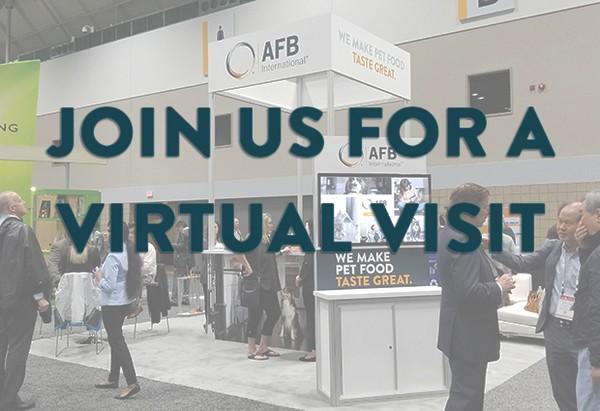 Palatants
Palatants
1+ MIN
21/07/2020
Join AFB International at PetFood Forum Connect 2020
AFB International is excited to be part of the Petfood Forum CONNECT virtual event to be held September 9 – 10 and September 15 – 17. This new digital experience offers a unique way to interact, learn and share with key members of the pet food industry. You will be able to visit our digital showroom for premium content, downloadable links to educational materials, and meet with our Sales teams for a 1:1 conversation. We look forward to 'connecting' with you! by All Extruded
 Formulation
Formulation
5+ MIN
21/07/2020
Performance Measurement in Pet Food
It is very important to constantly monitor the performance of all our products for the duration of their life cycle. Obviously, there are tests that are only performed prior to launch, but there are others that must be done regularly to know that we are meeting the attributes that we originally designed.
Definition of performance
Regardless of the work carried out by the Marketing team regarding image communication and product characteristics on the packaging, the expected scope in terms of its performance with buyers and pets must be clearly established.
A primary challenge for the pet owner to cover is to meet the expectations of food shapes, textures, colors and aroma; if this is not achieved, the product will never be offered to the dog or cat.
Regarding pets, all products must meet a minimum of attributes in order to be successful, which are mainly the following: compliance with the nutritional requirements for which the food was designed, acceptance and preference of the food, quantity and stool consistency.
There are attributes established in certain types of specialized diets (prescription foods) that must be evaluated with specifically developed protocols to test their performance.
Compliance with nutritional requirements
There are different entities worldwide (AAFCO, NRC, FEDNA) that have established minimum and maximum levels of nutrients for the different stages of life of pets; it is very important to take them as a reference to correctly design products that meet the expected nutritional performance; Additionally, there are also very valuable specific publications with update reports and suggestions of levels of certain nutrients.
The AAFCO establishes animal testing protocols to validate foods designed for stages of growth, pregnancy, lactation, and digestibility in dogs and cats.
General
Before launching, it is very important that an industrial batch of food is generated that meets the specifications established by the technical areas (formula, quality of ingredients, process controls, etc.); This product must remain in the cellar, preferably in its final packaging and with standard storage conditions for a period of 4 to 6 weeks prior to evaluation, this in order to try to 'tie' the time spent in the canal distribution the food of the competition against which it will be tested. Additionally, we must have the basic analytical values of said product (proximal chemical analysis).
Parallel to the previous action, it is necessary to evaluate against which product or products of the competition will be compared. It is suggested to choose the local market leader. Of course, said product must belong to the same market segment in which our new product will participate.
Remember that the competition is constantly improving their food, so it is very important to repeat the acceptance and preference tests every 6 months. The animal colony that is used for the tests is also very important since there are some breeds with a tendency to overeat, others that are easy to have digestion problems, poor stool consistency, etc.
Acceptance and preference
The acceptance test is carried out in order to document the quantity of food consumed of the product to be evaluated during a specific period of time and in turn compare it with the quantities of the competitor's food consumed during the same period of time.
An individual food is always tested per test and colonies of between 20 and 40 dogs or cats are generally used and the periods to be evaluated range from 7 to 15 days per food. It is very important to document the individual data of each animal in order to have a greater number of data. The preference test in its two-bowl version is the most widely used by the industry to assess the performance of one food compared to another. It uses 20 to 40 animals and its duration can be 2 or 4 days.
A known amount of food is offered in each bowl, always taking care that this amount is more than the pet can consume during the session. The bowls are presented aligned in front of the animal, one on the right and one on the left, taking care to rotate the position of the bowls the next day. The amount of time that the food is offered for consumption should be according to the animal's physiology and it is generally accepted to use between 15 and 20 minutes for dogs and 17 to 24 hours for cats.
Obviously both dogs and cats should be treated as individuals in order to have more observations, avoiding group feeding. At the end of the test we will have a lot of valuable information to make decisions. In general, total consumption is reported both in quantity and percentage per animal and in group, as well as the consumption radius (higher / lower).
It is recommended to assign a percentage difference in the consumption of both diets that determines whether the animal preferred one diet or the other; this value is established subjectively (example: 20%) and consists of concluding if the difference between the consumption in percentage of both foods is less than 20%, then it is considered a tie, of course, if it is higher, it is reported as a preference.
At the end of each acceptance and preference test, it is suggested to carry out a statistical test in order to determine the strength of the results.
Amount and consistency of stool
A performance attribute expected by pet owners is that the food generates little amount of feces with a firm consistency. Of course this is highly variable depending on the market segment in which the product participates.
To carry out this type of tests it is recommended to have an animal colony of at least 20 individuals.
The food is provided freely accessible and an adaptation period of 3 days is allowed at least before starting to monitor the results. After those 3 days, the quality of the feces of each dog should be monitored. This is done by comparing the stool with a table of reference photos.
In general, the stool scale determines that non-formed and liquid stools have a rating of 0, while dry and well-formed stools have a value of 100. The other values on the scale are 25, 50 and 75. There are Available photographic scales made by some manufacturers that can be very useful to us to qualify the feces.
In conclusion, it is very important to constantly test our products in order to know that we are meeting the performance expectations expected by our buyers.
Author: Miguel López Advisor and Nutritionist of Pets
Email: [email protected]
Source: All Extruded
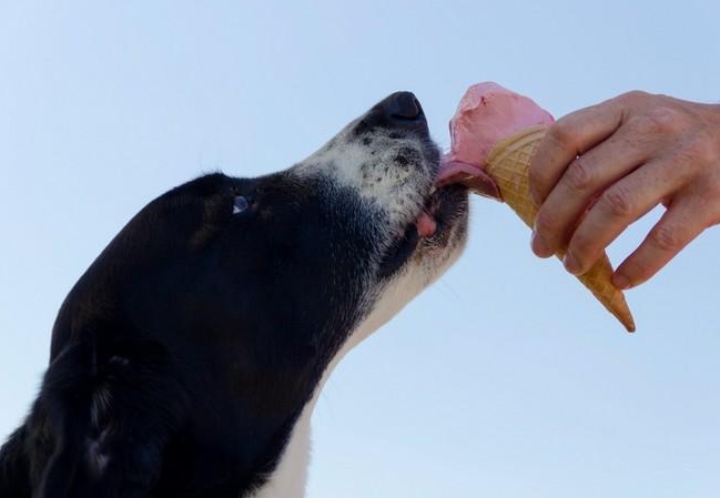 Vegetable Origin
Vegetable Origin
4+ MIN
20/07/2020
The Ingredients that are making their way in the Pet Food Industry, did you know them?
Trends are, in general terms, what mark the path of innovation and growth of companies. In our pet food industry, alternative fruits, vegetables, and proteins are becoming more prevalent.
In this article we tell you about trends in new ingredients in pet food. As we mentioned in a previous article, the type of food that is chosen for a pet increasingly reflects the style of eating that its owners practice on a daily basis; This is already an indisputable trend that is constantly increasing.
A spokesperson for the US Highbush Blueberry Council says: 'A few years ago there was very little fruit in pet products. Back then, the idea of fruits and vegetables in pet food for cats and dogs seemed unusual, yet intriguing to many in the industry'.
More fruits among the components of pet food
Fruits as an ingredient are a relatively new category in the content of pet food; have been added to the classic ingredients embodying the concept of health, since it has been proven that the nutrients and fiber of the fruit increase the overall nutritional value and, in some cases, improve the flavor, texture, color and control of moisture. Furthermore, these ingredients allow to take advantage of inherent nutraceutical or phytonutrient qualities, especially fruits rich in antioxidants.
The fruits and components that are being used the most today are:
Strawberry or strawberry, raspberry and blueberry puree, since it is rich in fiber, and both dogs and cats reap the benefits of fiber.
The apple and its dried version, due to its high fiber value, as well as its water content that helps to maintain humidity in wet foods.
Citrus and its fiber: In early 2019, the citrus fiber used in the production of pet food had increased by 437%.
More vegetables among the components of pet food
Vegetables are currently being incorporated into pet food recipes as well, as they offer significant nutritional benefits. This change occurs essentially because there are certain nutrients that animals cannot obtain from ingredients that come from animals.
Thus, accompanying the trend of choosing organic and low-processed products, the market is replacing the adhesion of synthetic vitamins and minerals with those that can be obtained from organic fruits and vegetables and natural supplements. Vitamins, minerals, phytonutrients and antioxidants can also help pets overcome and fight serious diseases, such as cancer.
The vegetables and their components that are being used the most today are:
Dark green leafy vegetables, such as broccoli or kale, for their high content of calcium, potassium and magnesium.
Carrot and celery
Alternative plant proteins
Dogs and cats are considered carnivores, so meat is an essential component of their diet. Still, they don't always have to come from an animal. Some time ago, in the United States, work has been done on injecting genes from animal muscle proteins into microbes like yeast, so that they can then be fed and fermented. This results in proteins nutritionally identical to those from meat.
In parallel, pets that are allergic to conventional ingredients are pushing the development of exotic proteins to continue to please pets' taste buds while improving their health.
What are the disadvantages of these changes?
Although it is true that, like people, animals need fruits and vegetables in their daily diet to have a balanced and nutritious diet, when it comes to replacing a percentage of meat products with more vegetables and fruits, a problem arises: The sustainability.
The pet food industry is a fundamental part of the chain of sustainability and circular economy, essentially due to the use of meat by-products that are considered waste not suitable for human consumption. Manufacturers use the parts of animals that humans do not consume to produce pet food since, despite being 'waste' to humans, they are nutrient-packed components.
For example, poultry fat is commonly used in pet food to add calories and flavor chicken. The human consumption of these animals leaves internal organs, feathers and many other parts unconsumed. If it weren't because they are largely used to make pet food, these parts would form an unthinkable amount of waste.
That said, we can affirm that yes, fruits and vegetables are essentially necessary in the feeding of pets, and their increase and incorporation are beneficial for the general health and well-being of domestic animals.
Even so, the great challenge of the industry will be to find a new destination or purpose for the waste from human meat, or a way to coexist with the increase in vegetable ingredients in the pet food market.
In conclusion
It should be noted that companies in the industry have a responsibility, in a way, to educate consumers about the changes and improvements they make in their products and food. They can do this through their networks, their packaging, and by providing accurate information to local sellers and retailers, who are closest to the end consumer.
On the other hand, while pet owners are increasingly increasing the preference for ingredients of plant, organic and natural origin, the real reason is that they believe it will be the most beneficial for their pets. Thus, the question that arises is: will it improve the health of my pet? Will it present fewer digestive problems? Will it have more energy? After all, the function of the food formula is what is really important.
In any case, it is correct to affirm that the components of plant origin are much more than a mere trend, but rather a beneficial addition to the health and well-being of pets.
Are you already aware of these new additions to the industry? Tell us, we are interested in knowing your point of view.
Author: All Extruded
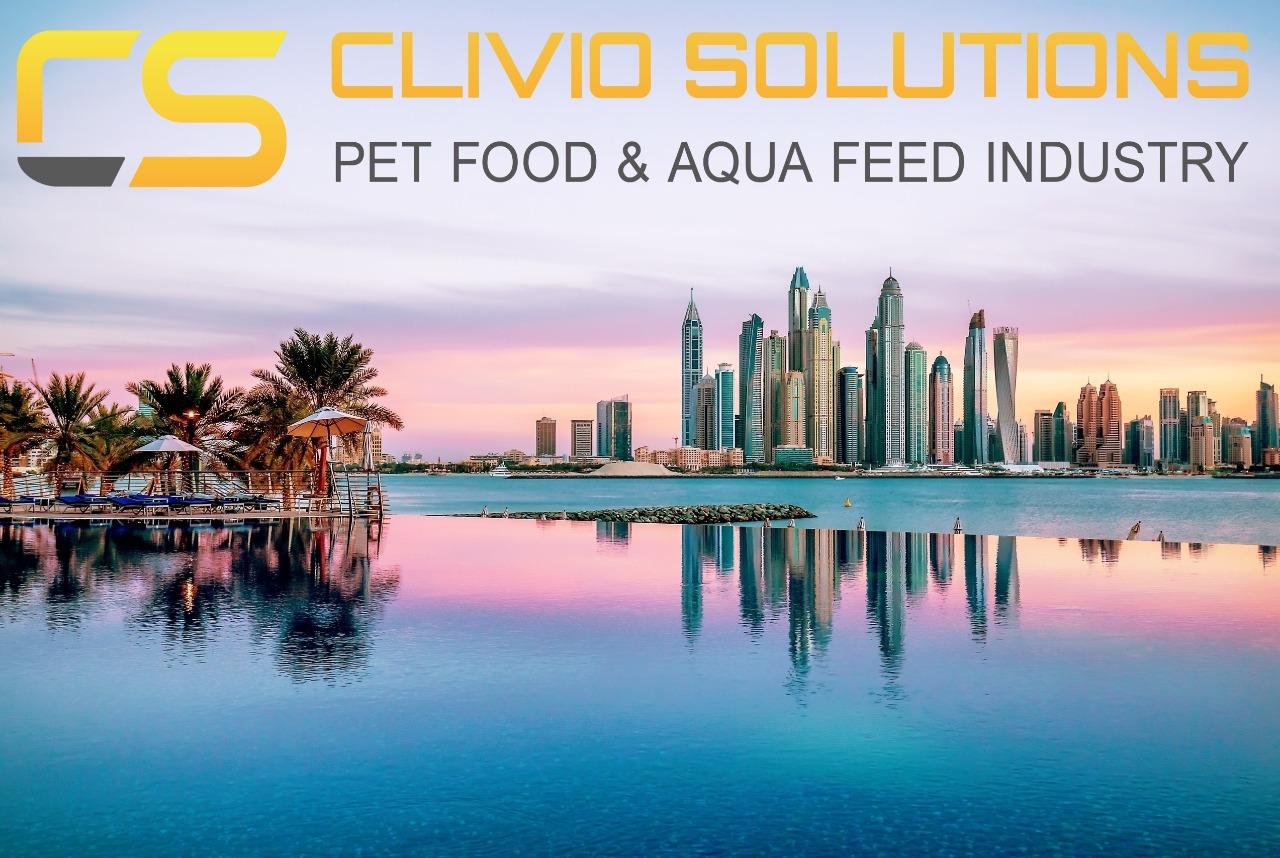 Trends
Trends
1+ MIN
19/07/2020
Clivio Solutions was selected by Dubai Company for the full development of its new line of Premium Pet Food
Dubai Investment Company that will take its first steps in the exciting business of Premium Pet Food relies on the experience and work capacity of Clivio Solutions to carry out this promising project. As Engineer Diego Clivio, Managing Director of Clivio Solutions, told us, his Company has been selected after a study carried out by the Investment Company of the United Arab Emirates. In turn, Diego told us that he feels very confident in what his Company can do for this project, which will undoubtedly be successful knowing that he also has the valuable contribution of the experienced Lic. Juan Manuel Peralta. The Pet Food Industry is in constant movement, new trends and customs emerge following the continuous demand by pet owners to give them something increasingly healthy, complete, healthy and rich. For demanding customers, it is no longer enough for foods to be "balanced" in their nutritional contributions, they seek other virtues or characteristics that differentiate it and add value. Clivio Solutions can help you in your project with the comprehensive development of these new products whose demand is on the rise, defining the best product for the market where you want to operate, including formulation, production process, selection of raw materials and even the final presentation of the finished product and its commercialization. Contact: [email protected]
 Cats
Cats
2+ MIN
18/07/2020
Increased Pet Food Turnover in the EU
An estimated 80 million European households own at least 1 pet. This high number of pets has increased the pet food turnover. This is according to the latest annual figures from the European Pet Food Federation (Fediaf) that show that pet ownership across Europe remains at a high level, Cats remain the most popular Cats remain the most popular pets in European households with a stable population of 74.4 million in the EU and 102.7 million in Europe and Russia. Dogs are growing in popularity with 66.4 million dogs in the EU (84.9 million in Europe and Russia) in 2017 compared to 63.7 million (82.2 million) in 2016. In terms of other pets, small mammal and reptile ownership has increased slightly, the population of ornamental fish (measured by number of aquaria) has remained relatively stable at 9.4 million. Pet birds, however, have seen a 10% decline in the region bringing the total population to 35.4 million. Boost for the European economy The growth in pet population is good news for the European economy with the pet care sector contributing a significant turnover of € 36.5 billion. In 2017, the pet food industry alone delivered € 20.5 billion in turnover, an increase of € 1 billion on the previous year, with related products and services remaining stable at € 16 billion. Mechthild Exner-Herforth, new President of Fediaf said: 'The importance of pet ownership is evidenced by the large number of direct and indirect employment created. The pet food sector is responsible for providing approximately 100,000 jobs in the industry and we estimate a further 900,000 jobs in related pet care sectors. Included in this are the suppliers to the pet food industry, approximately 200,000 veterinarians in Europe, 60,000 specialist pet stores, the pet accessories industry, trade shows, pet press, breeders, animal welfare organisations and transport.' by Emmy Koeleman -All About Feed & Dairy Global
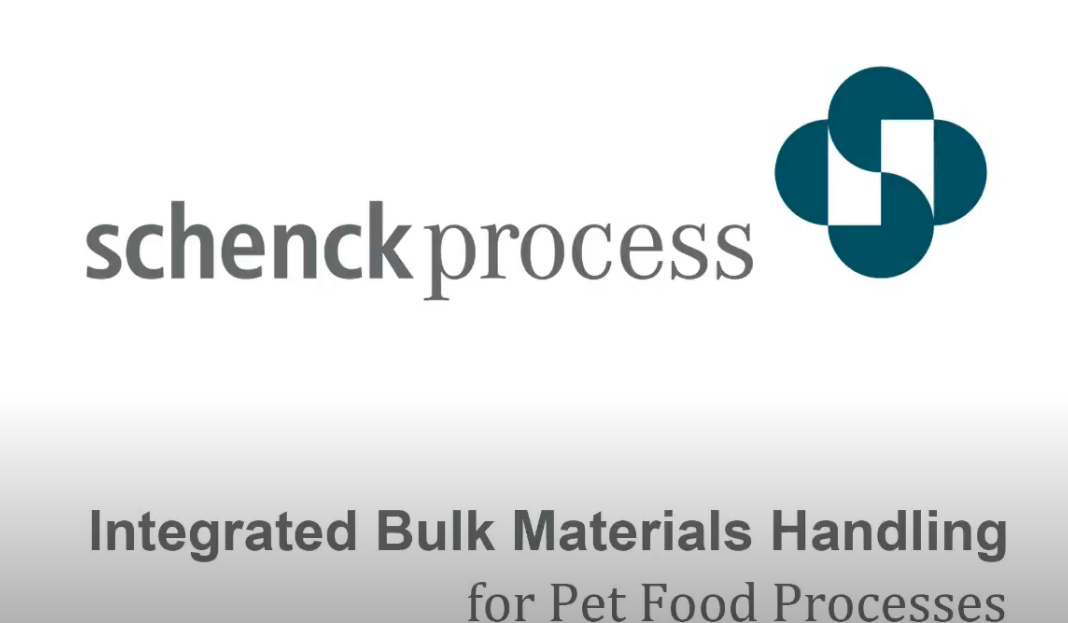 Conveying Systems
Conveying Systems
5+ MIN
17/07/2020
Bulk Material Handling Systems
The pet food industry has long searched for methods to control the movement of ingredients through to the manufacture of the finished product and from process to packaging in a reliable, inexpensive, maintenance-free system that yields little or no breakage.
Schenck Process provides a range of pneumatic and mechanical conveying solutions, bulk material feeders, sifters, screeners, mixers, mills and process controls for the world's most recognizable pet food brands. With a vast amount of experience in the pet food industry, Schenck Process is able to provide process solutions based on the company's core technologies and can advise and design the most suitable arrangement of equipment to improve the efficiency and production rates of most processes.
Aware of the need to produce the highest quality product together with minimal product degradation, the elimination of inefficiencies and ensuring product safety, Schenck Process can tailor the solution provided to the specific requirements of the client and the installation.
Examples of recent installations for the Pet Food industry include:
Truck or Railcar unloading and bulk storage systems of meal
In-plant transfer systems for major, minor and micro ingredients
Plant controls system upgrades
Plant dust control systems
Hammermill aspiration, convey and dust control
Scaling systems for blenders and extruders
Coatings handling systems
Continuous dense phase transfer of finished products
Emissions control systems for dryers and coolers
Feeding of majors, minors and dry palatants
Off-spec product reclaim and remill systems
Extruder negative airlifts
Odor abatement
]The range of technologies available from Schenck Process includes the following:
E-finity® Low Pressure Continuous Dense Phase (LPCDP) Pneumatic Conveying systems deliver the least amount of airflow to convey the product with minimal degradation. The system is configured to have a smooth and lip-free connection on tube joints, diverters that reduce cross contamination and provide a smooth, full bore divert and the product is slowed to slide into the termination bin for a gentle landing.
Gardner Ribbon Mixers provide consistent batch and continuous blending of powders and granules. The mixers use low energy and provide gentle mixing action with minimal heat generation ensuring that minor ingredients are dispersed homogeneously without the need for pre-mixing. Models with capacities ranging from 50 to 20,000 liters are available.
GKM Screeners provide controlled screening, multi-deck classification and de-dusting of dry, powdered and granular products. The screener is particularly suitable for high feed rates, multi-deck separations of fines and difficult to screen lightweight products.
Global Cleanable Airlocks (GCA) are ideal for applications where dry raw or finished products are being handled in the process and where inspection or system clean-out are required. Because the GCA is designed for high process rates and possesses a number of features suited for sanitary processes the airlock is perfect for pet food applications.
Horizontal Material Separators are cyclones that separate conveyed material from the conveying airstream, minimizing the amount of air that exits with discharge material. The horizontal cyclone design is similar to a standard cyclone however; the main housing unit is turned 90° with both cylinder ends capped. The HMS has a vertical footprint that is 50% less than standard cyclones taking up less manufacturing space and is perfect for handling large and small kibble, large flakes and fish feed.
Kemutec Kek Cone Mills are versatile size reduction machines for powder processing applications. With an ability to process a wide range of feed material and produce an equally wide range of product make the cone mill ideal for sizing in both wet and dry granulation processes. The Kek Cone Mill provides a gentle, low energy form of size reduction and eliminates traditional milling problems including noise, dust and heat generation. The gentle grinding action is capable of control within fine limits while maintaining a close particle size distribution with minimal fines generation.
Kemutec Kek Sifters are designed for the removal of unwanted materials such as strings, packaging, and insects from bulk product or minor ingredients along with the removal of de-agglomerated hard lumps of product. Fitted with a cantilever shaft the Kek Sifter provides users with a high standard of hygiene and ease of operation. A 30-second screen change and no tools required for stripping the unit down make cleaning and maintenance quick and easy.
MCF PowerSaver® Dust Collectors save up to 50% of operational costs by using medium pressure air for the cleaning cycle. An integrated blower provides the 0.49 bar medium pressure air for cleaning which eliminates the need for plant compressed air in the filter and frees up existing compressed air capacity for use in other processes. The MCF PowerSaver provides excellent operational capabilities in high dust load applications.
MechaTron® Feeders are perfectly suited to handle a wide range of volumetric or gravimetric feeding applications. With the unique feature of complete disassembly from the non-process side, users can quickly clean, reconfigure or service the feeder. Sanitary 3-A models of the MechaTron® are also available. The MechTron is perfectly suited for feeding majors, minors and dry palatants.
ModuPlasma™ is an odor abatement system that uses direct treatment, which means the emission is led through the energy field, in opposition to other plasma solutions, where ozone is injected into the emission. This direct treatment results in oxidation 1 to 10 million times faster than in nature. Quick results and done in an environmentally safe manner.
MoveMaster® Chain Conveyors for the movement of bulk grain supplies from delivery vehicles into storage silos. The chain conveyors have a high tensile strength to handle a large volume of material together in a reliable and efficient manner with minimal maintenance requirements.
MULTICOR® Mass Flow Meter's accuracy, low profile, and dust tight solution make it ideal for extruder milled grain metering. Designed with a drive shaft and partitioned measuring wheel, the MULTICOR applies the science of Coriolis technology by accelerating the raw materials and their resultant forces to accurately measure flow rate.
MULTIDOS® DEA Open Frame Weighbelts are designed specifically for sanitary pet food and food processes. A tool-less, rapid belt removal for frequent cleaning cycles, an IP69K stainless steel load cell manufactured to withstand high pressure spray, a shaft mounted, wash-down drive system for simple power transmission, and product contact surfaces with 316 stainless steel make it ideal for sanitary weighing and feeding applications.
Supplied Air Extruder (SAE) Hood is a key component of the Schenck Process high feature Supplied Air Negative Airlift, which conveys extrudate from the extruder to the dryer with HEPA filtered or treated convey air instead of potentially contaminated air from the extruder room floor. This is important to all pet food producers concerned with avoiding finished product bacterial contamination after the extrusion kill step.


























